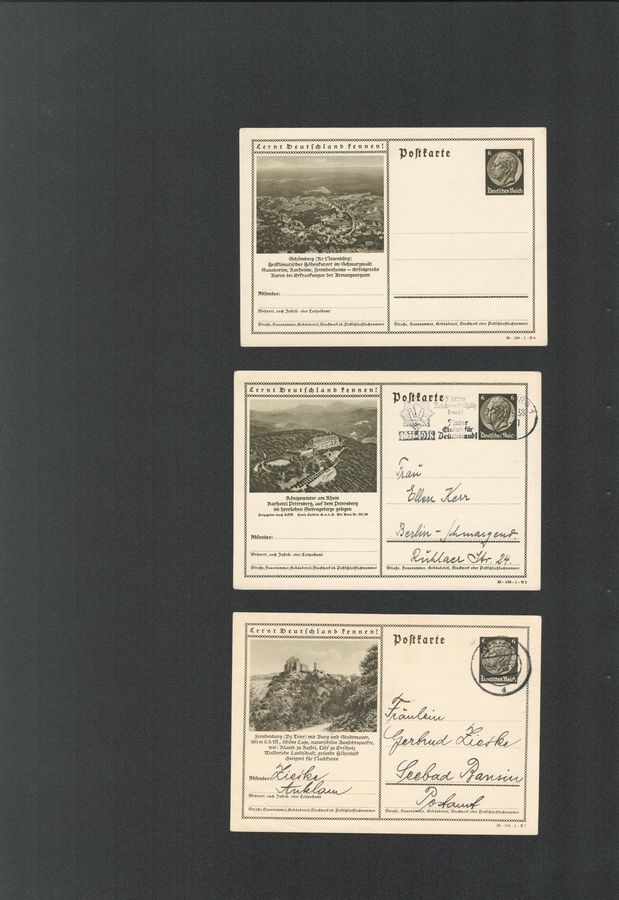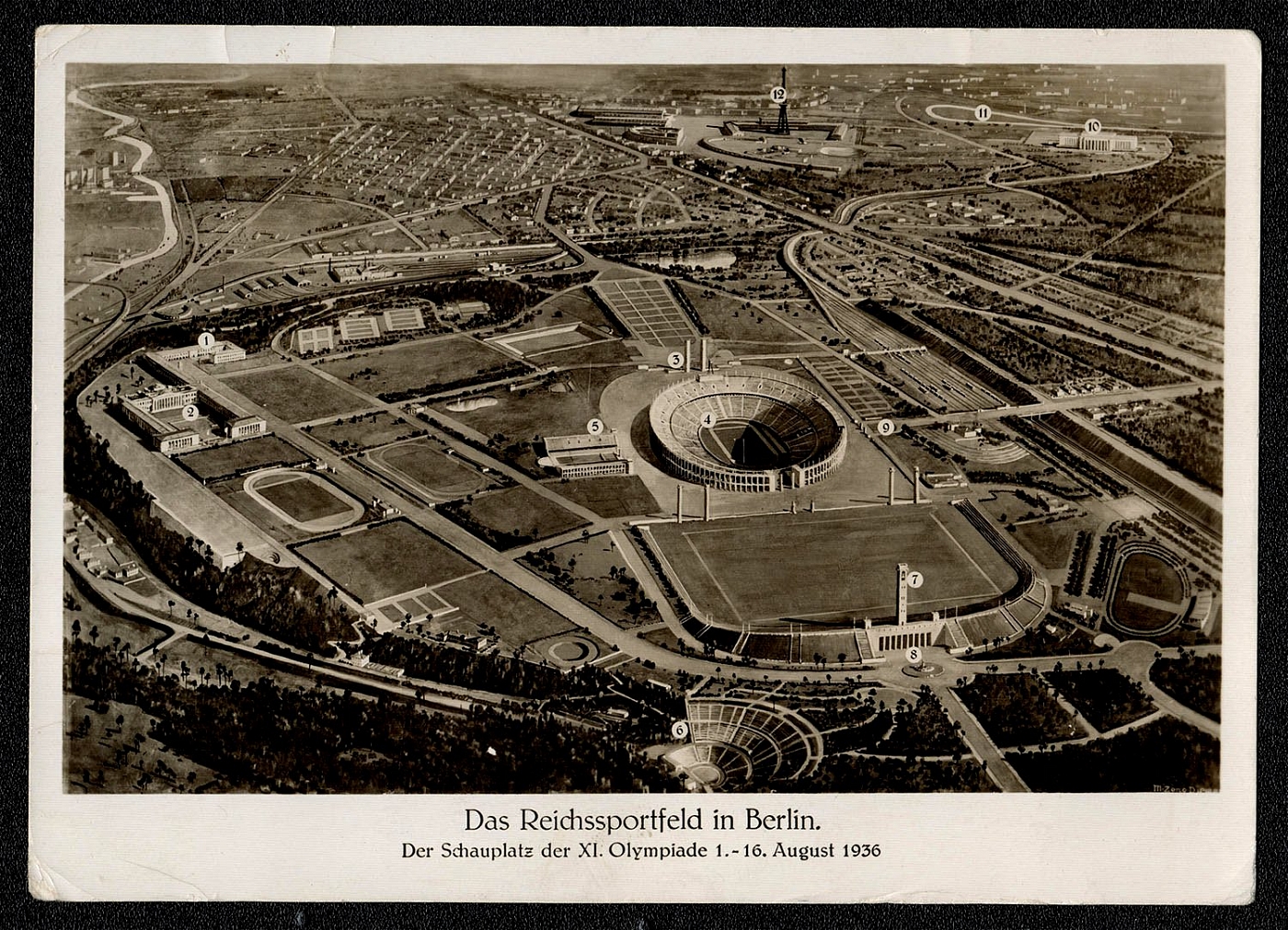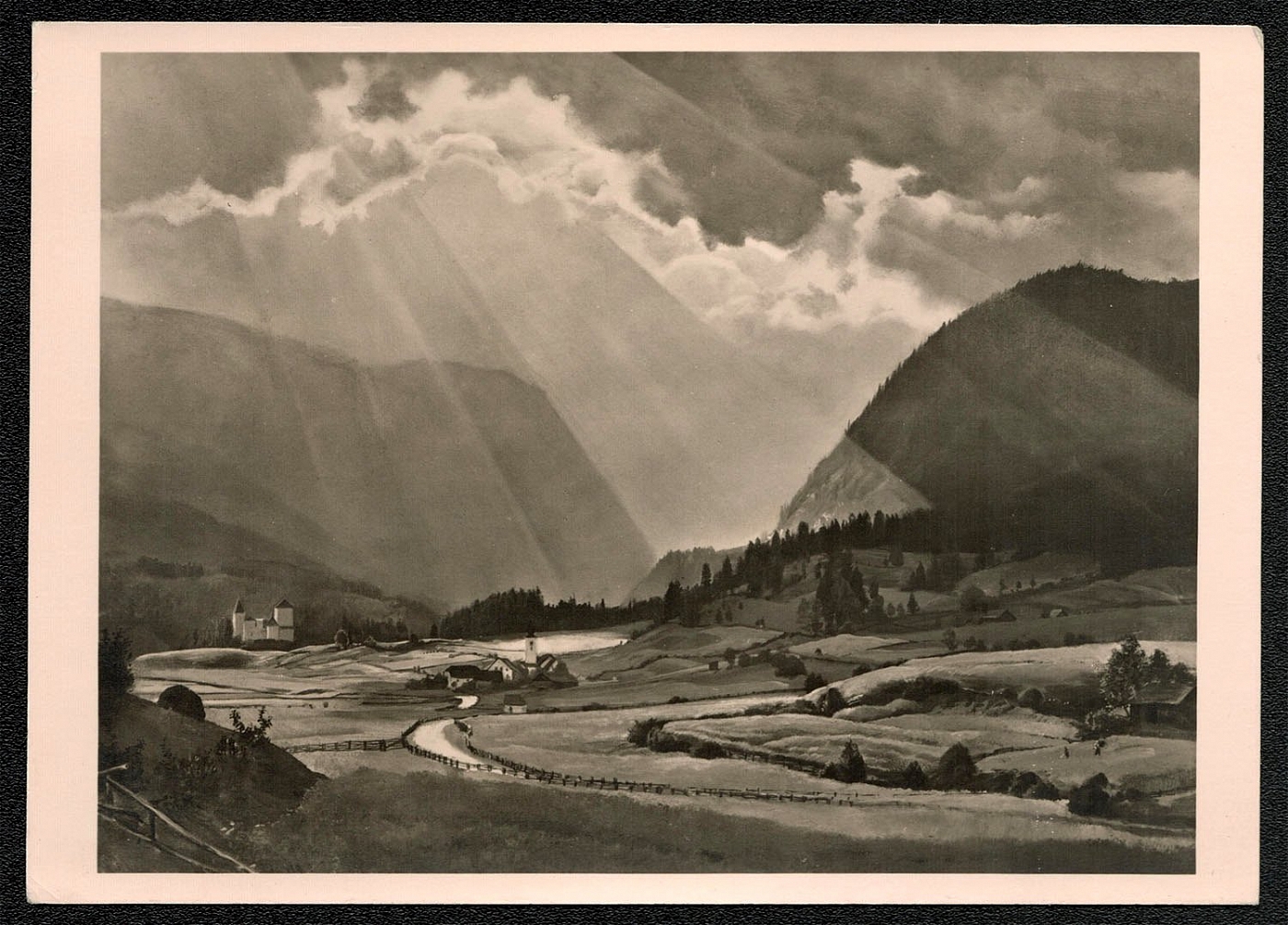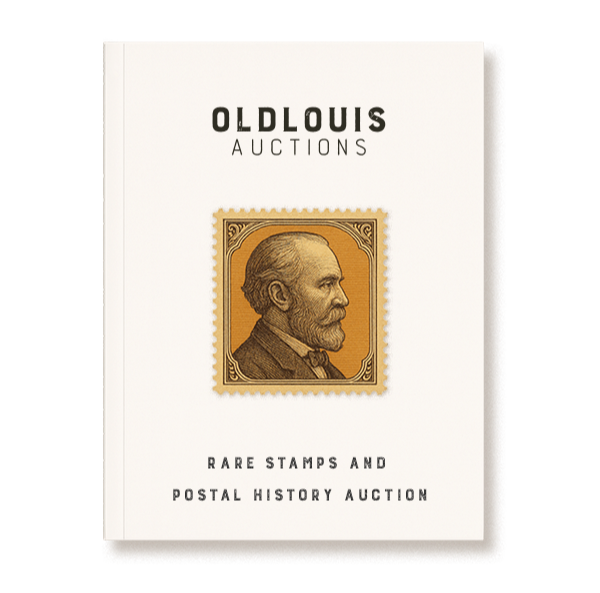
1933-45 Third Reich Germany Propaganda auction in 3 parts. More than 1,000 items of German propaganda. Highly specialized auction with many rare and valuable postcards, covers, souvenir sheets, posters, documents, and more. High value and low starting prices.
1104
lots
listed
listed
590
lots
sold
sold
0
bidders
participated
participated
0
bids
placed
placed
Top Sales
Lot 305
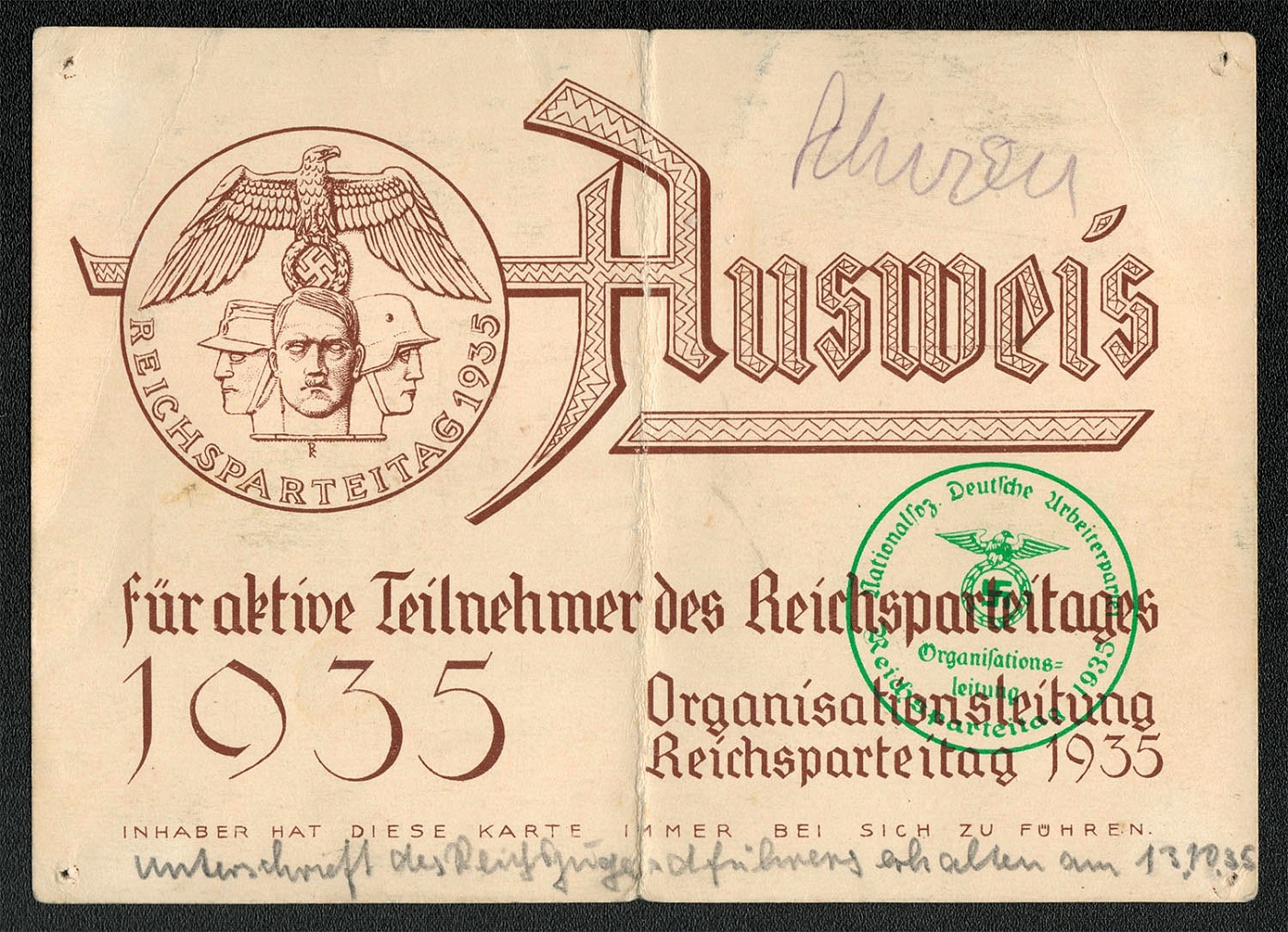
1935 Reich party rally of the NSDAP in Nuremberg, Membership Pass with Baldur von Schirach’s autograph
$350
Lot 383
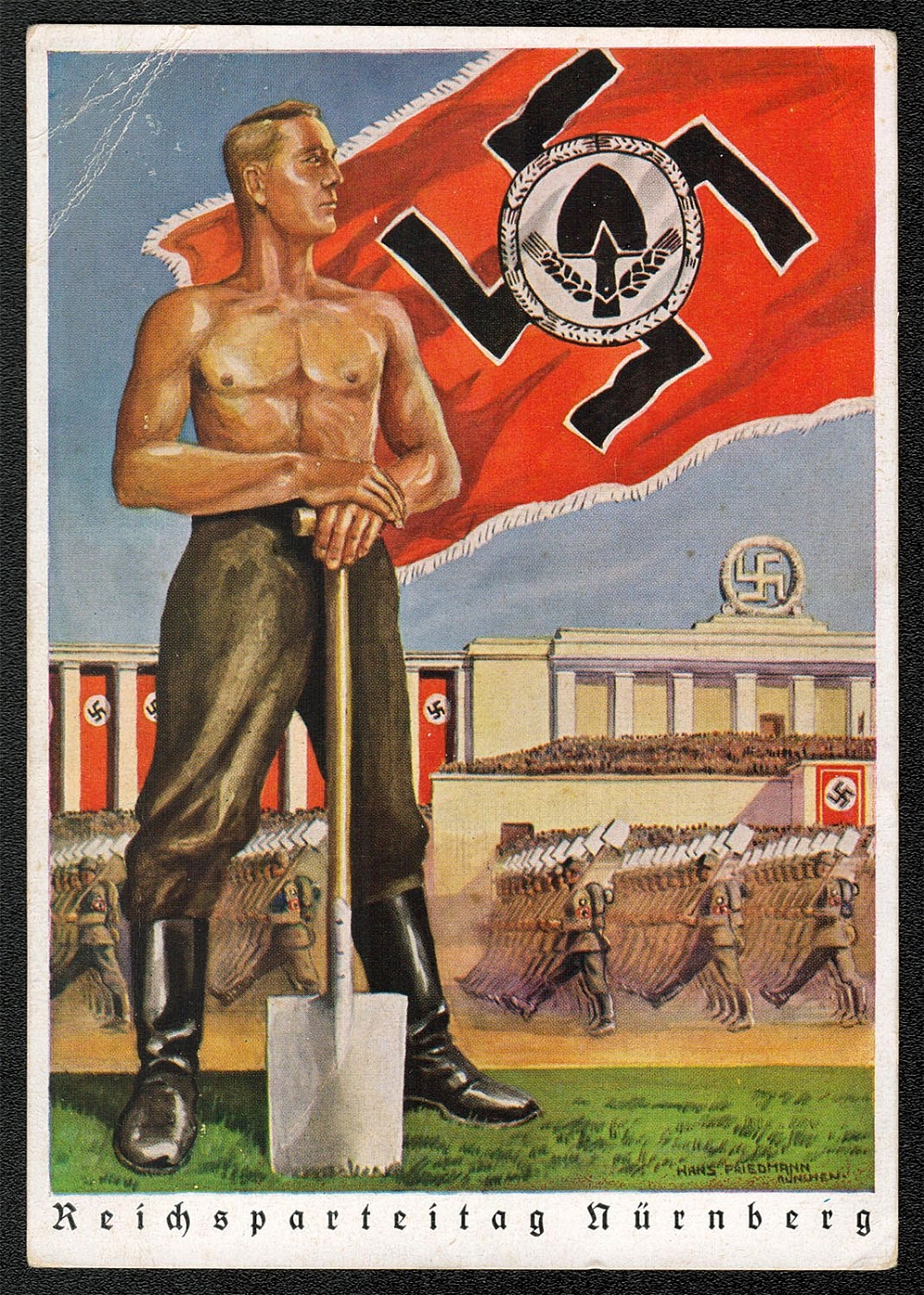
1938 Reich party rally of the NSDAP in Nuremberg. Barechested Labor Corps man with flag on the Zeppelin Field RARE card
$300
Lot 156
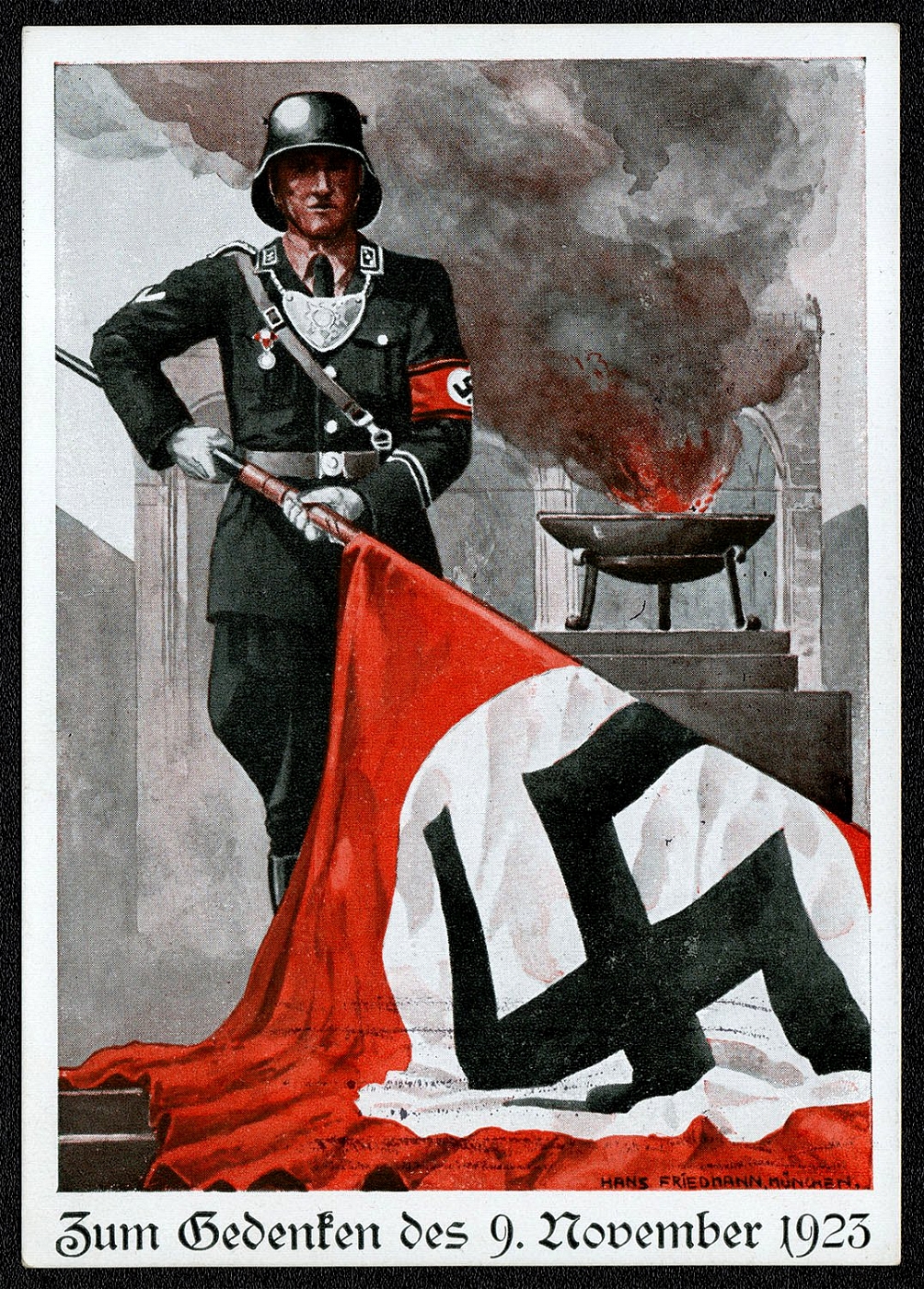
1937 Munich In Memory of 9 November 1923
$170
Lot 413
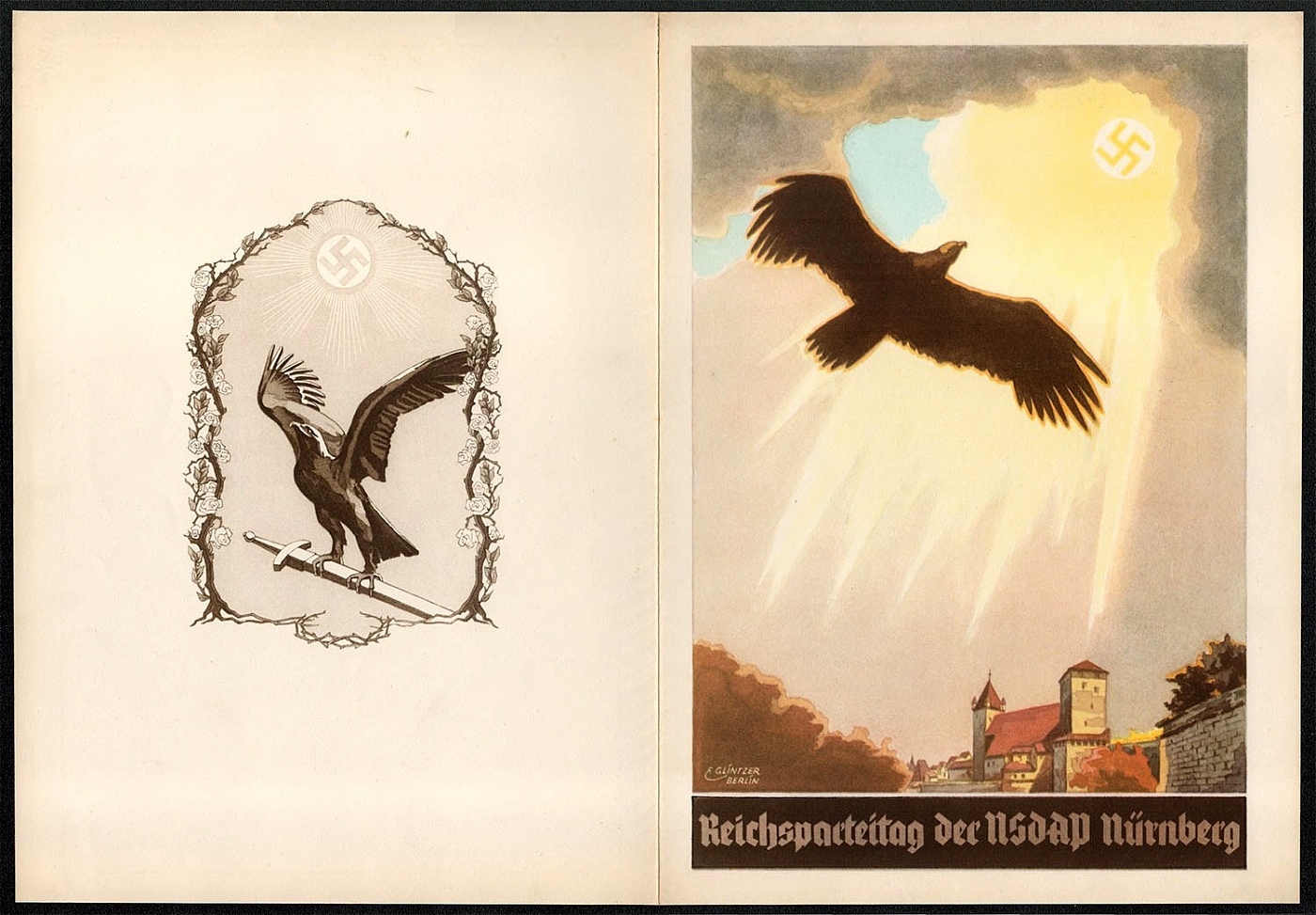
1934 The Special Greetings Big Size Telegram overleaf sent from the Rally Grounds, Reich Eagle
$170
Lot 848
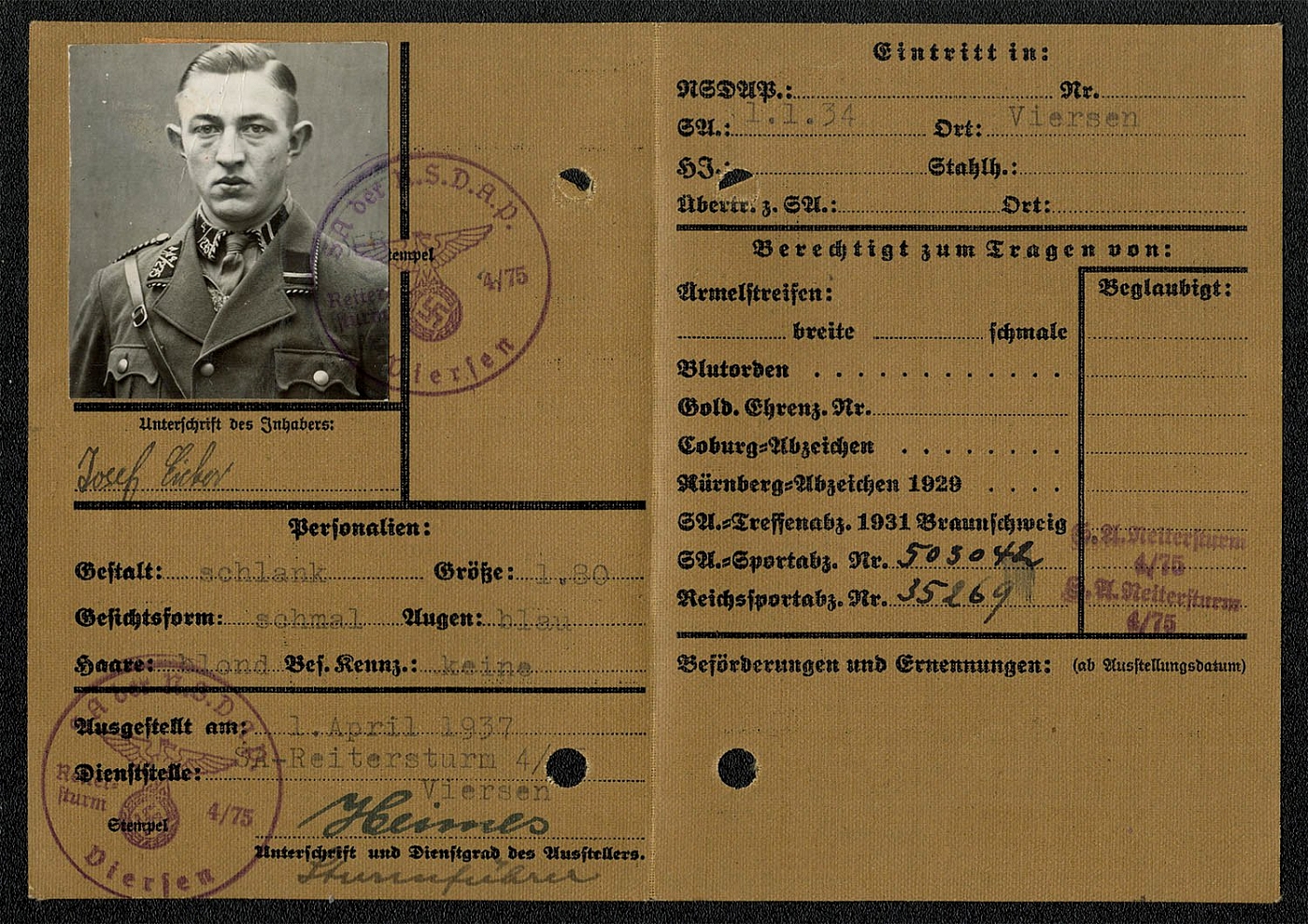
1934 Storm Trooper identity card for Corporal Josef Eicker, Germany Third Reich
$150
Lot 423
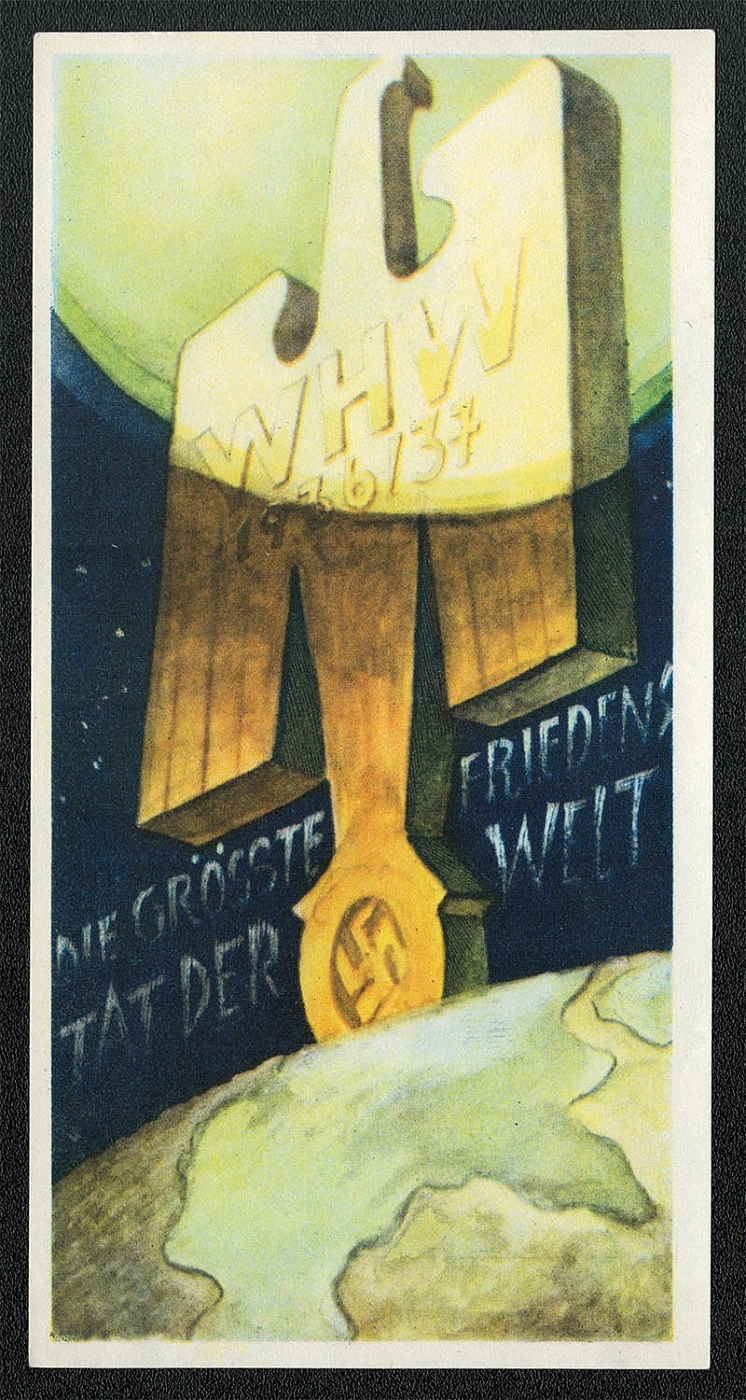
1937 The Greatest Freedom to the World, Propaganda Poster
$140
Lot 289
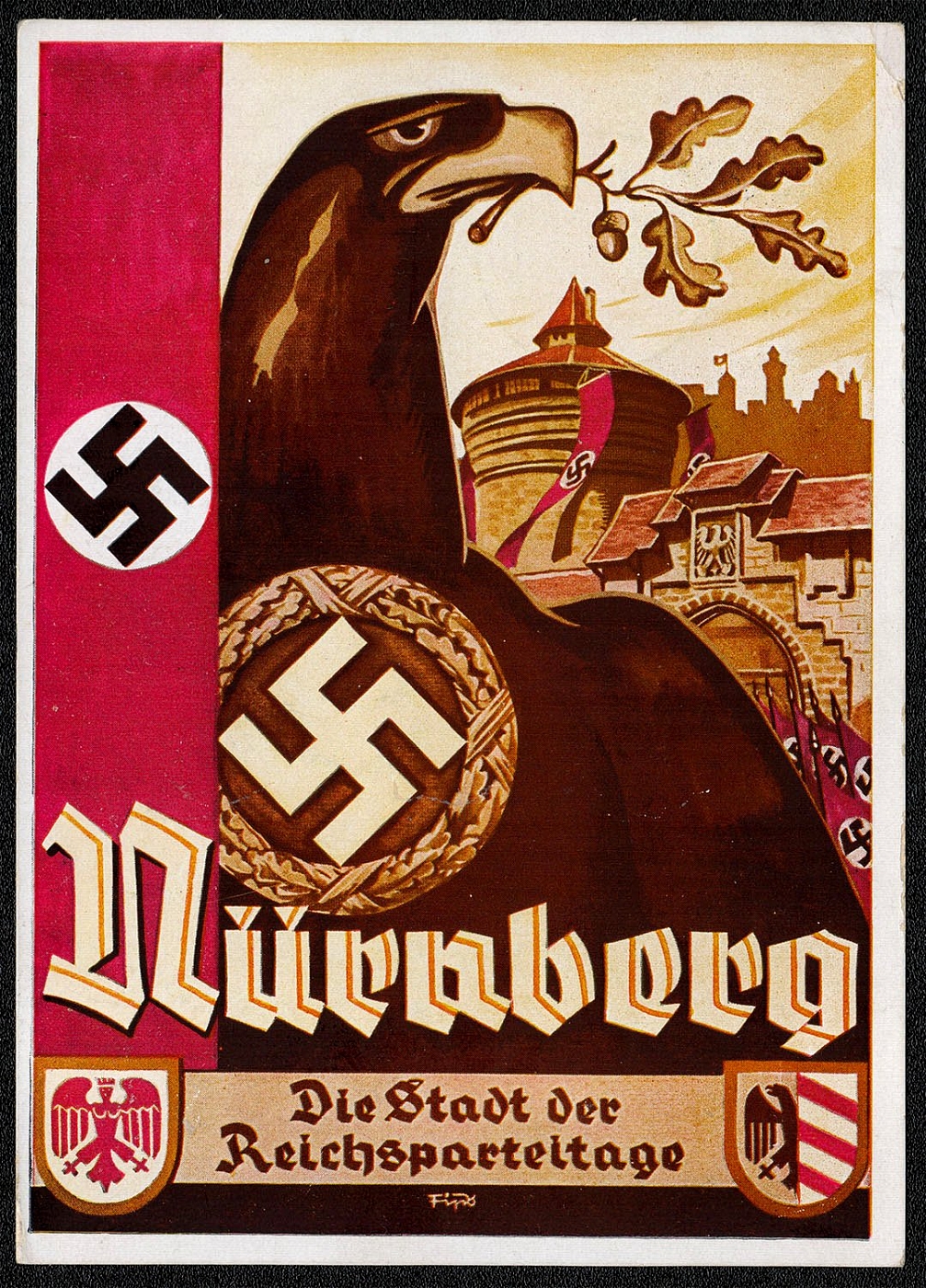
1934 Reich party rally of the NSDAP in Nuremberg, Eagle with oak branch, RARE card !!
$140
Lot 327

1936 Reich party rally of the NSDAP in Nuremberg, Hitler Youth Trumpeter, RARE card
$130
Lot 27
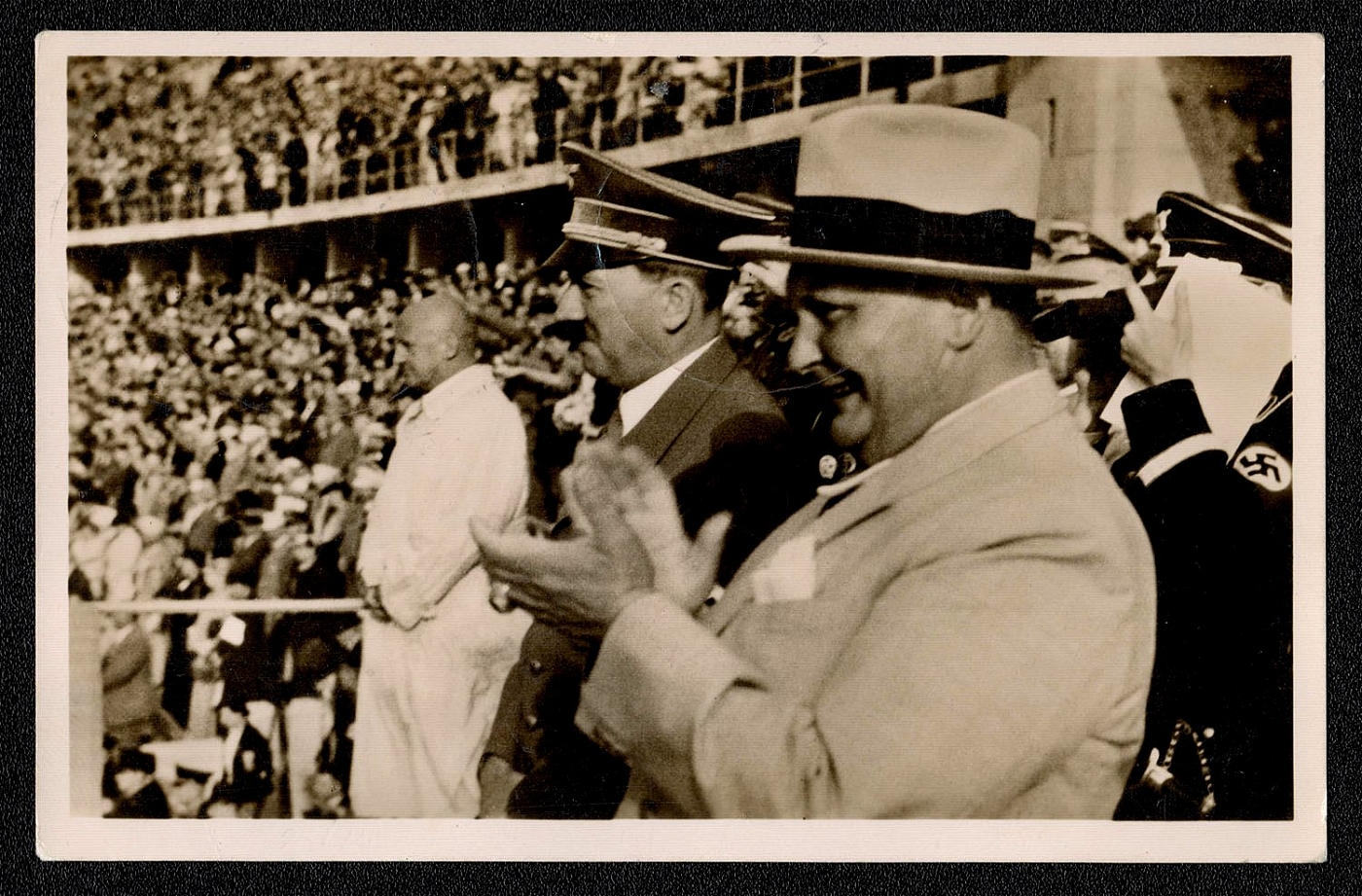
1936 Adolf Hitler and Hermann Goring at Berlin’s Olympic Stadium
$120
Lot 346
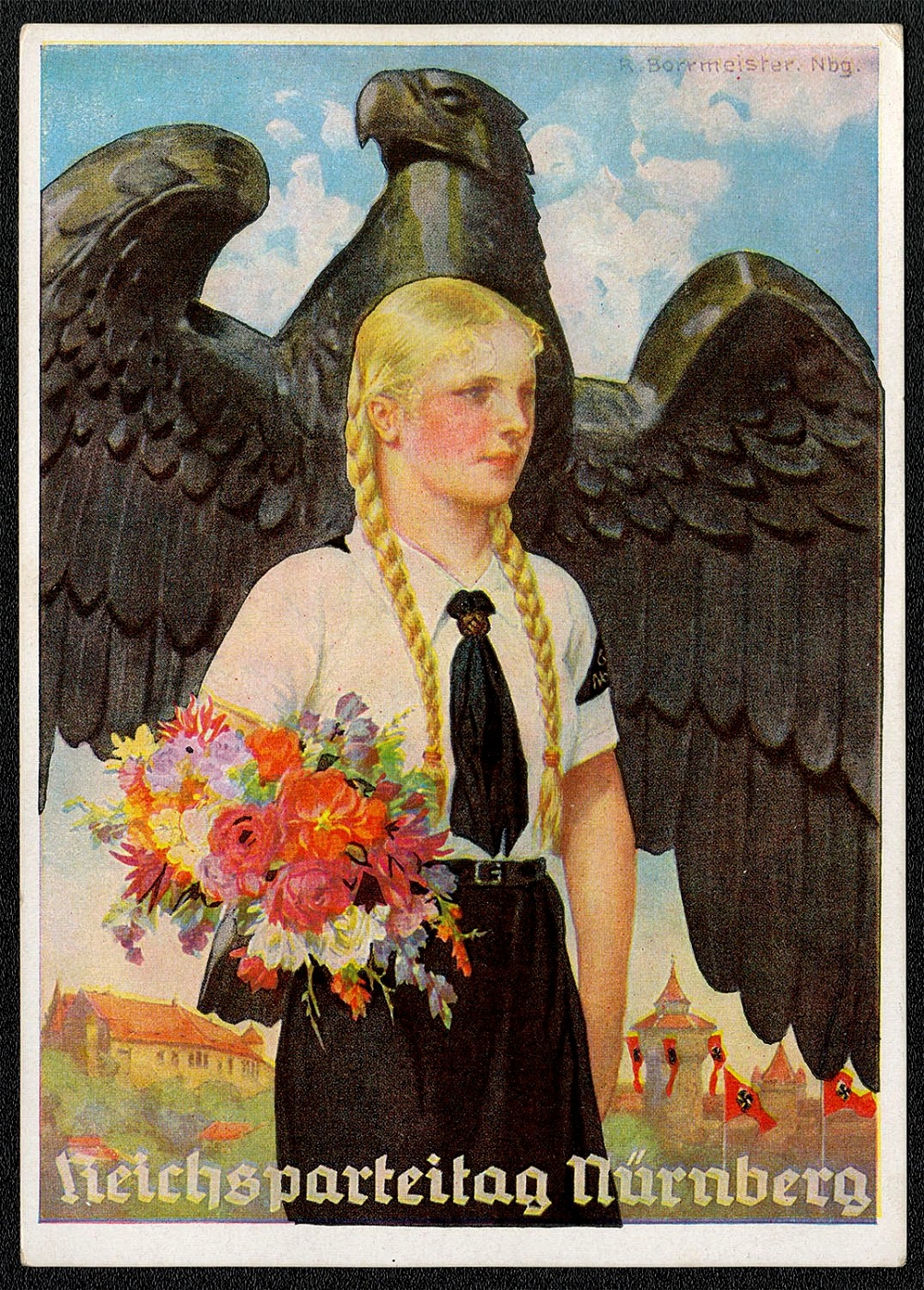
1937 Reich party rally of the NSDAP in Nuremberg, Eagle and BdM Girl with Bouquet, RARE card
$120
Lot 381
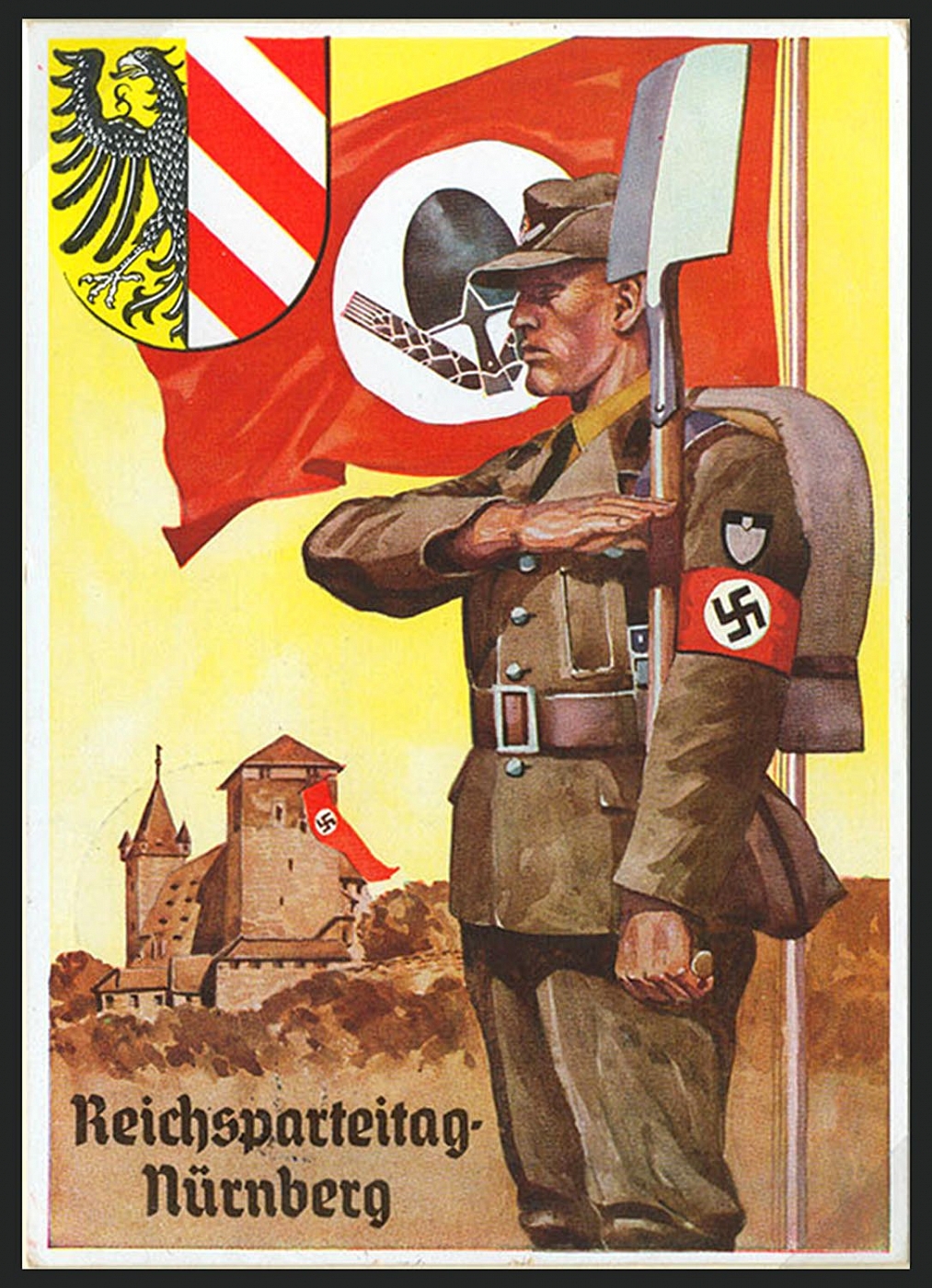
1938 Reich party rally of the NSDAP in Nuremberg. NS armorial shields surrounding an eagle RARE card
$120
Lot 382
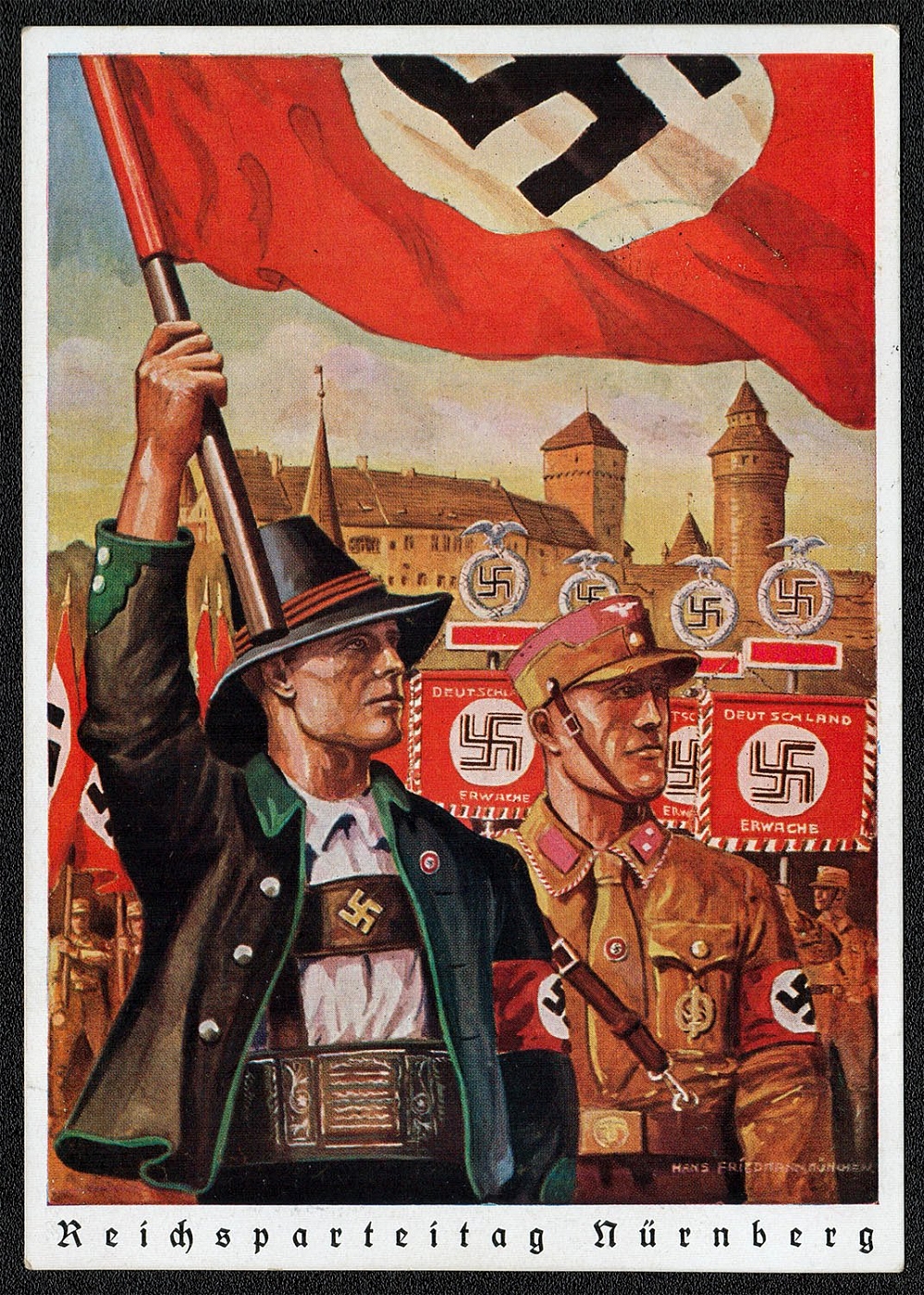
1938 Reich party rally of the NSDAP in Nuremberg. Austrian NS Member and Flag with SA Man and Standards RARE card
$120
Lot 415
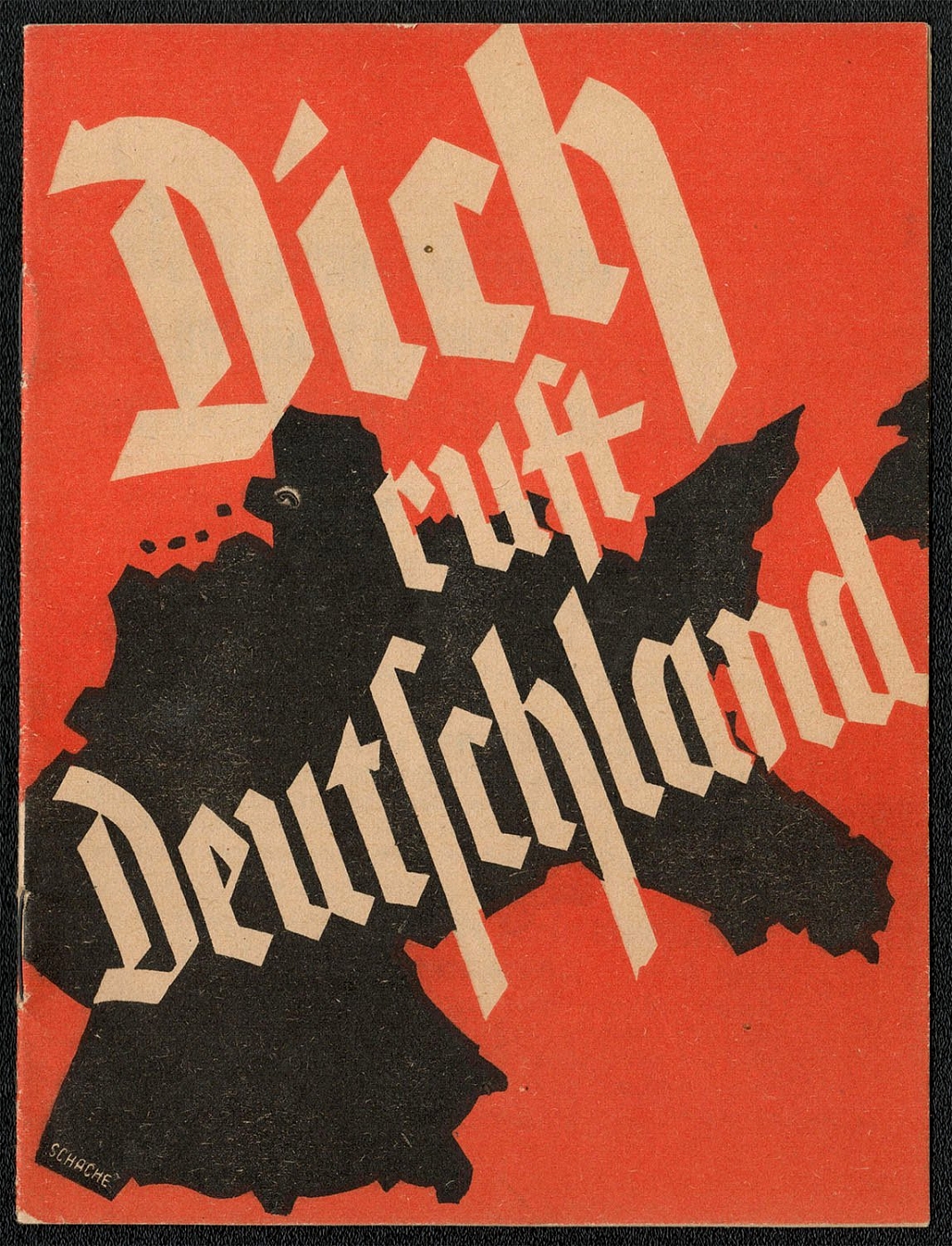
1933 Germany Summons You Brochure for the NSDAP Plebiscite
$120
Lot 412
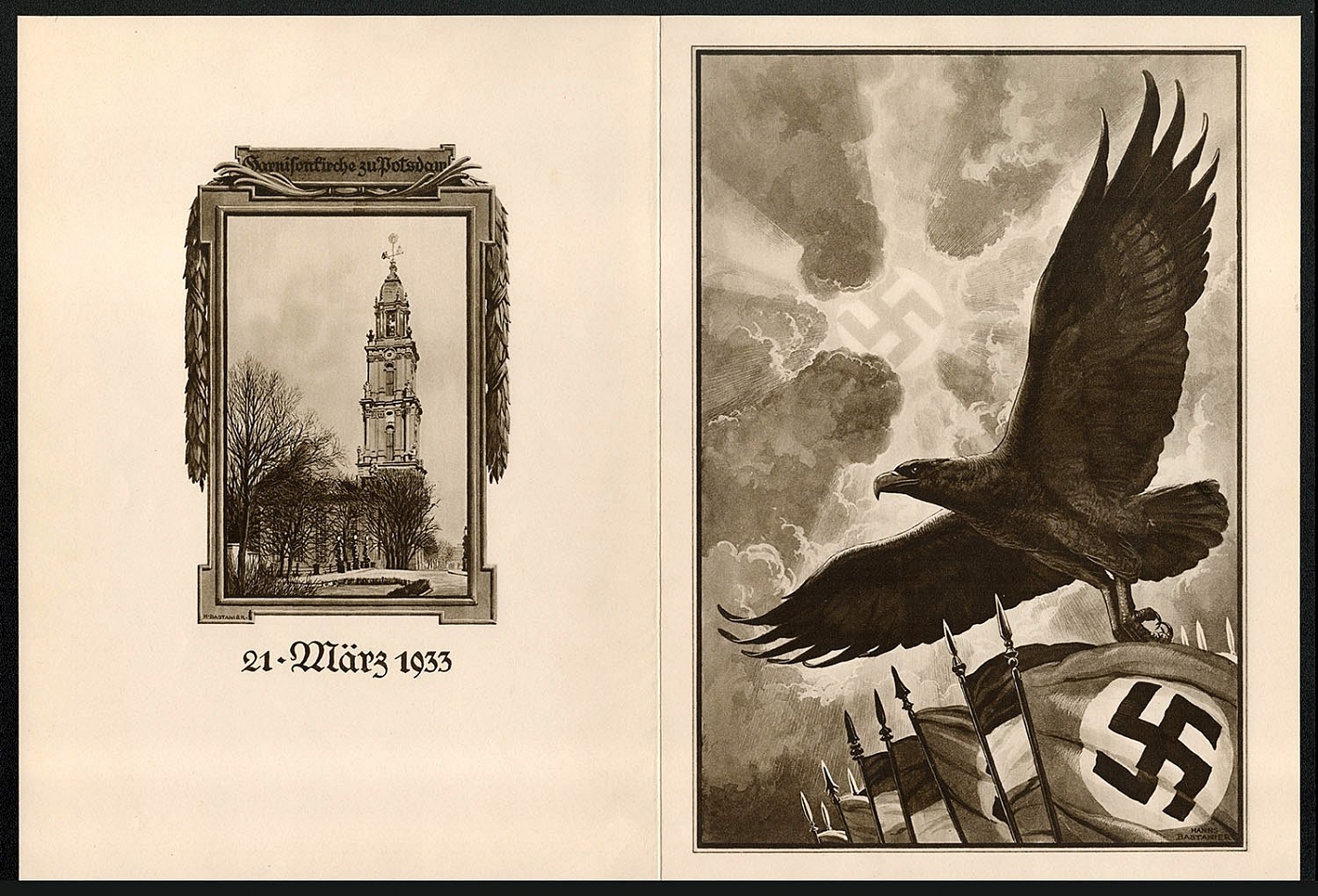
1933 The Special Greetings Big Size Telegram overleaf sent from the Rally Grounds, Reich Eagle
$120
Lot 852
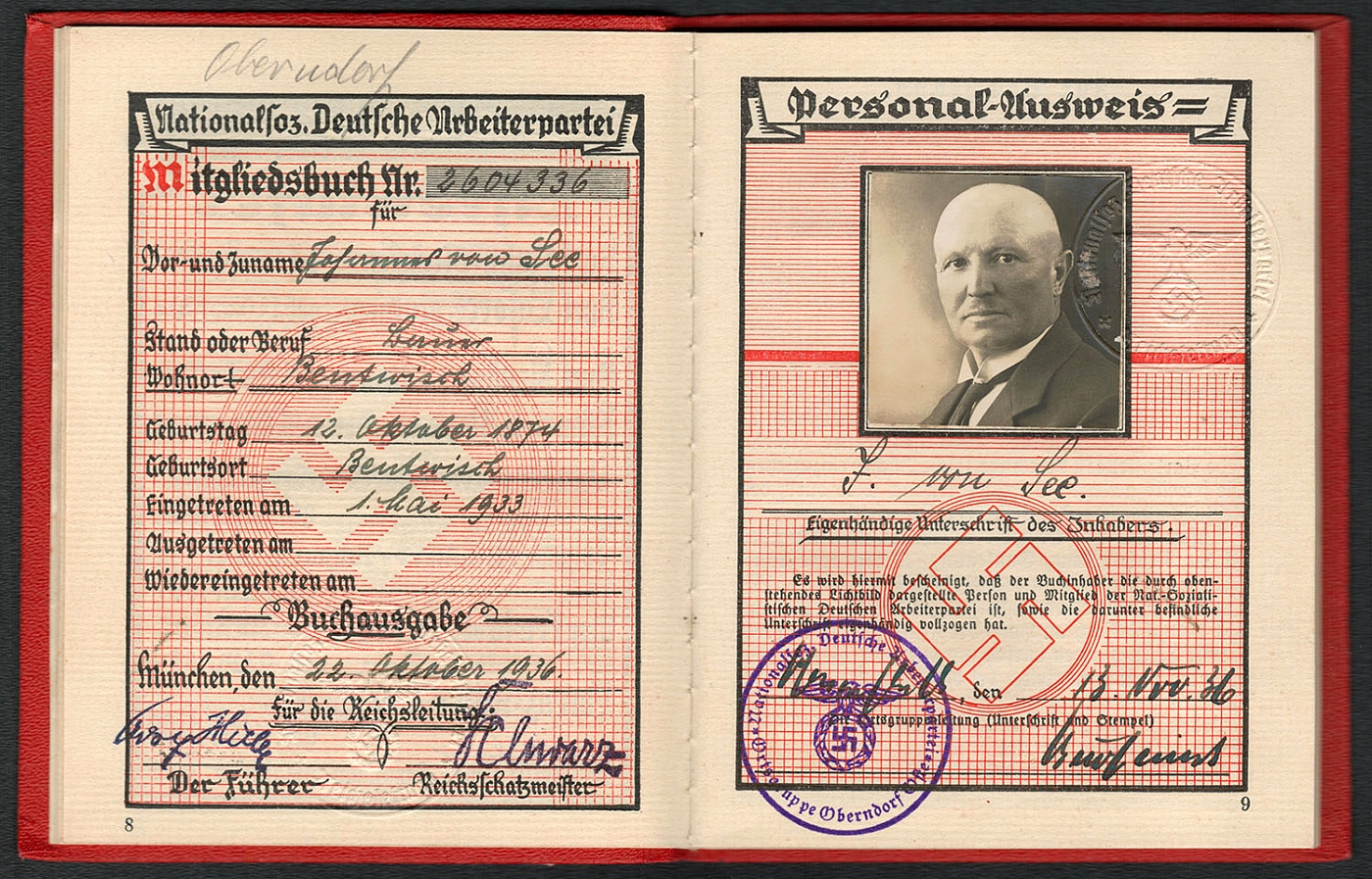
1941 NSDAP Membership Card, Germany Third Reich
$110
Lot 260
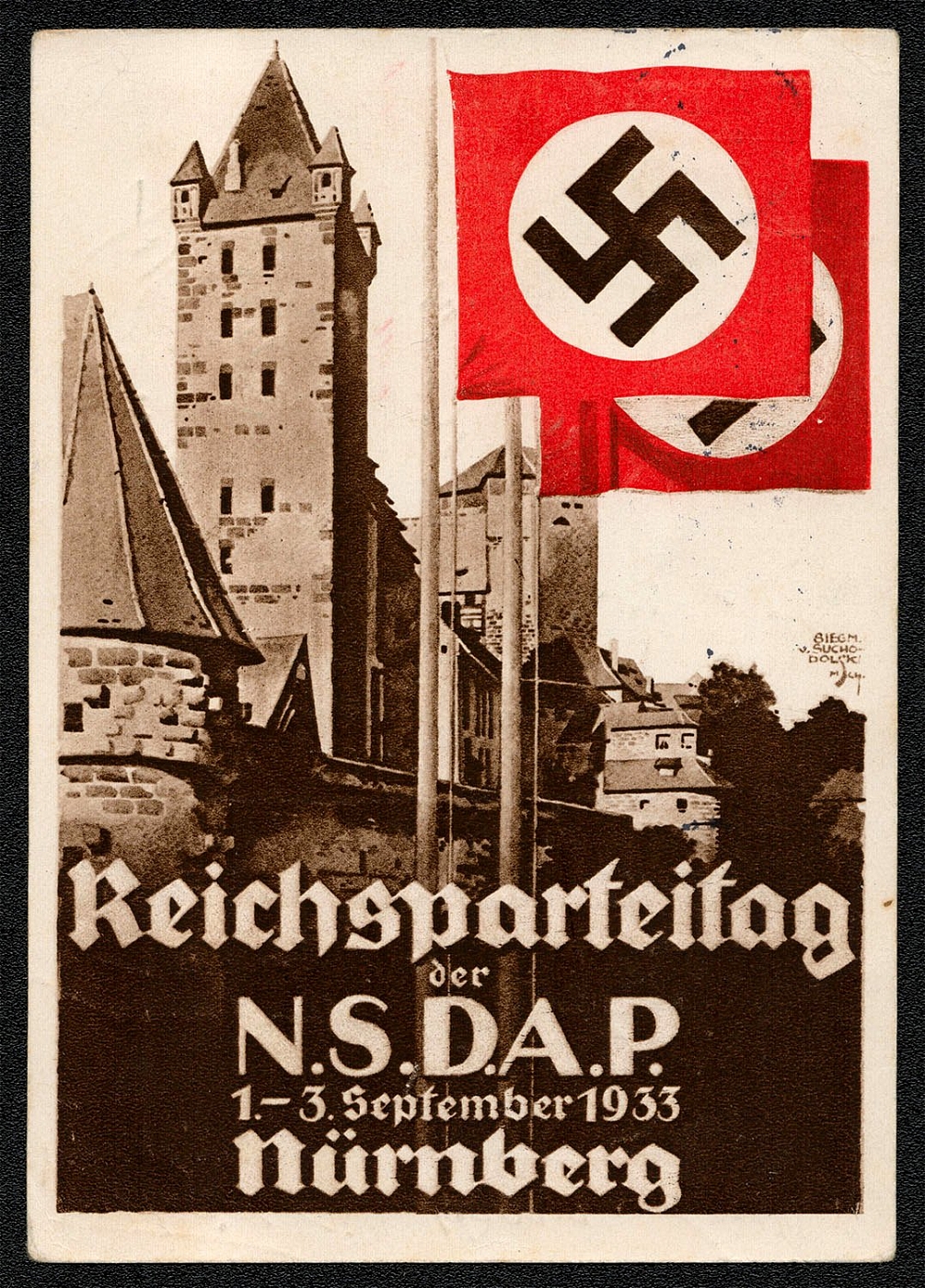
1933 Reich party rally of the NSDAP in Nuremberg, Enlargement of the uncatalogued “RDPJH” label on the post card.
$110
Lot 262
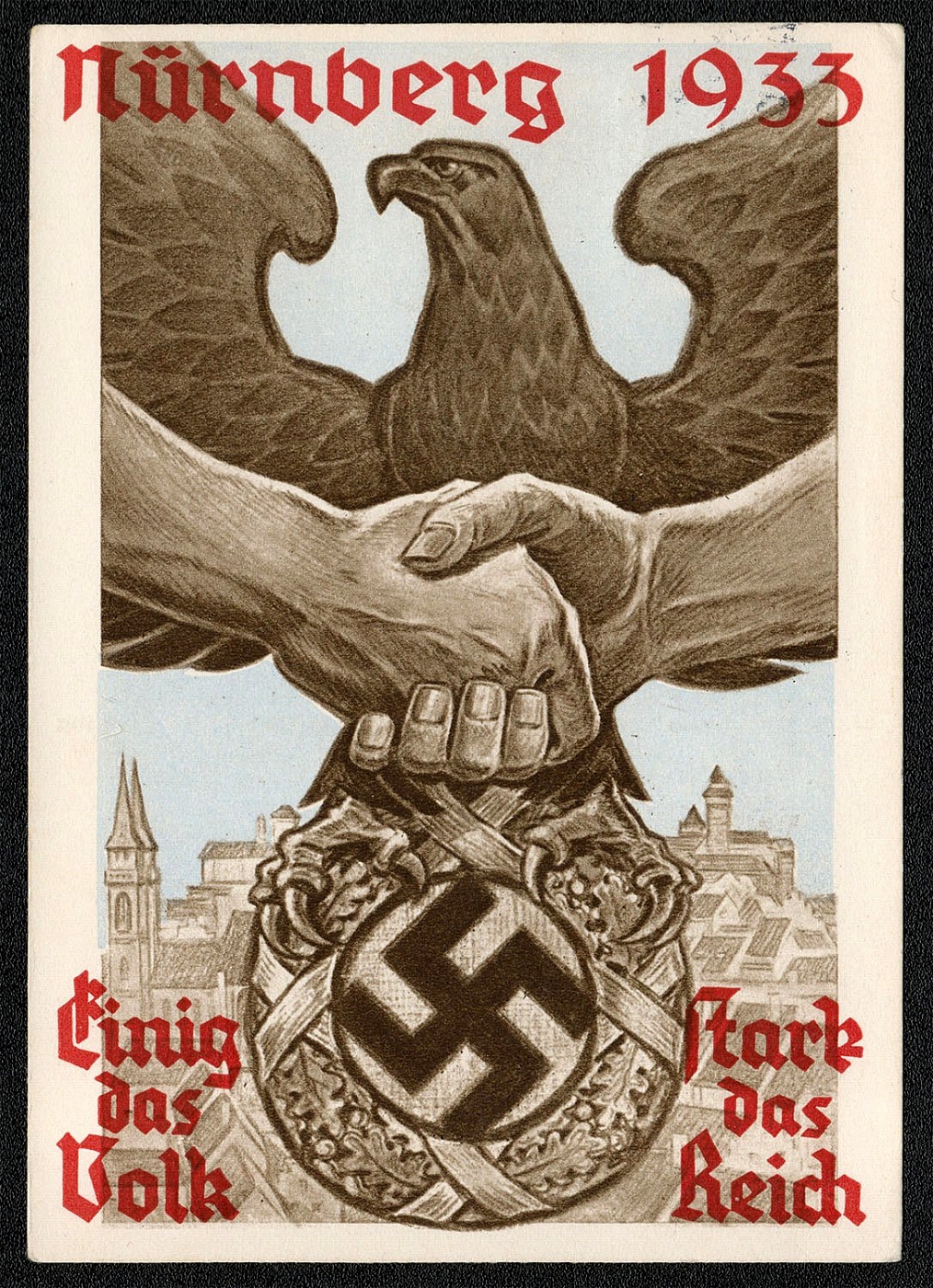
1933 Reich party rally of the NSDAP in Nuremberg, A United People Is A Strong Empire, Used
$110
Lot 330
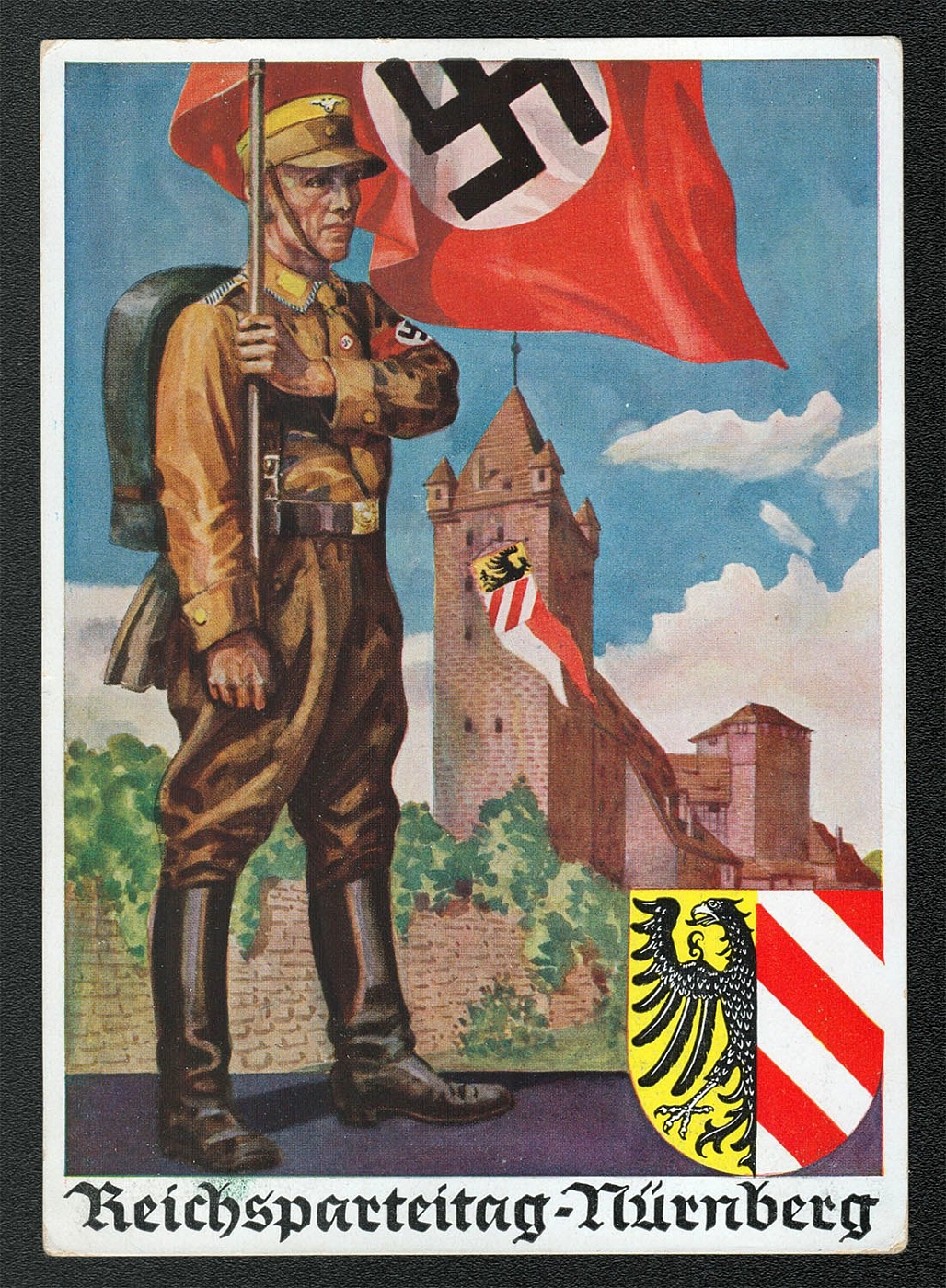
1936 Reich party rally of the NSDAP in Nuremberg, SA Standard Bearer, RARE card
$110
Lots:
1 - 400
Lot Number
Price
1
-
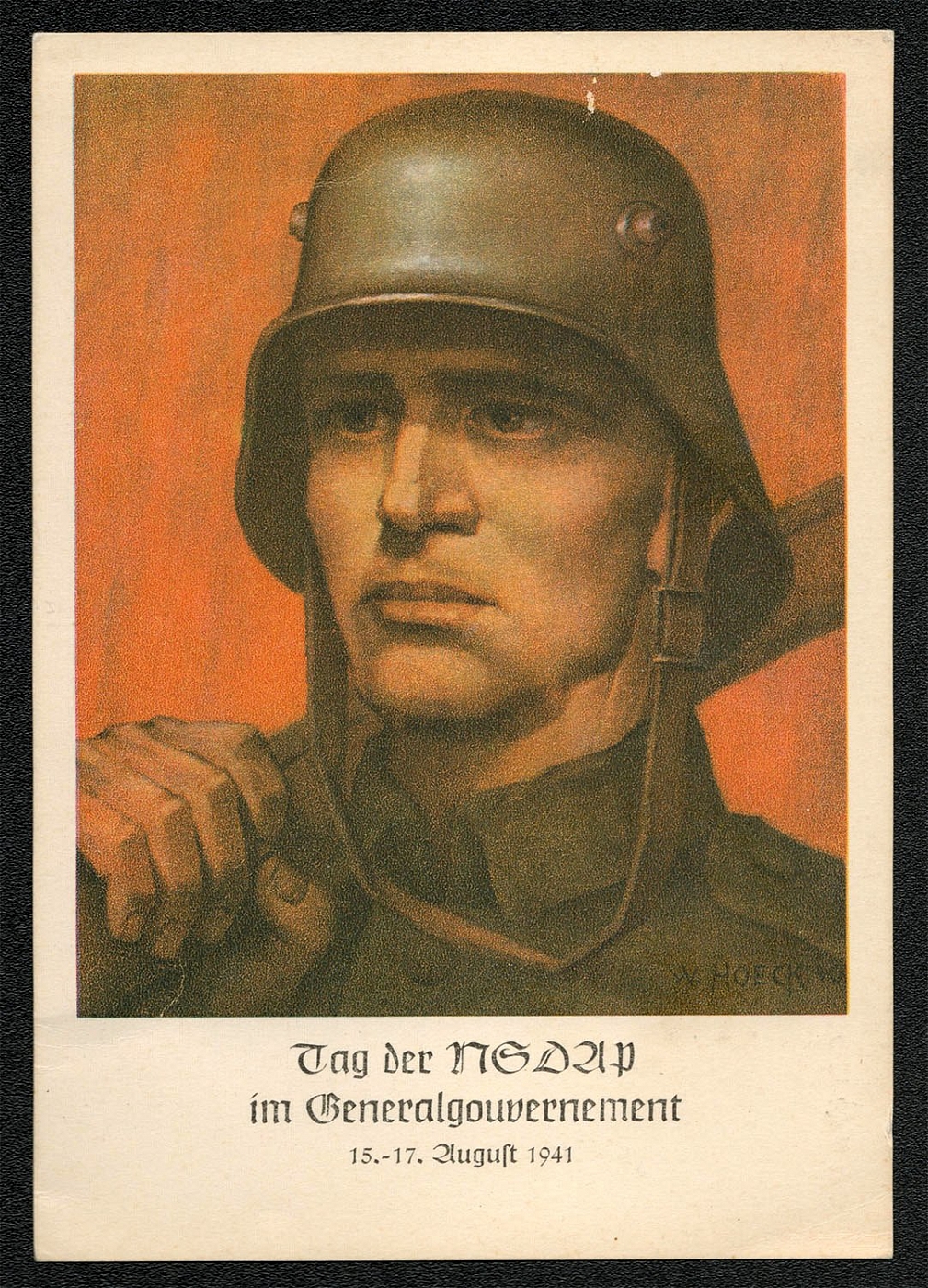
1941 Krakau One Year of the NSDAP in the Generalgouvernement
One Year of the NSDAP in the Generalgouvernement Krakau 15-17 August 1941 The commemorative cancel on Scott N61 depicts Wavel Castle in Krakau. Note the eagle’s head is turned to the left, in contrast to the stylized NSDAP eagle typically used in Generalgouvernement cancels and stamps. (The card itself was printed in Krakau.)
Unsold
2
-
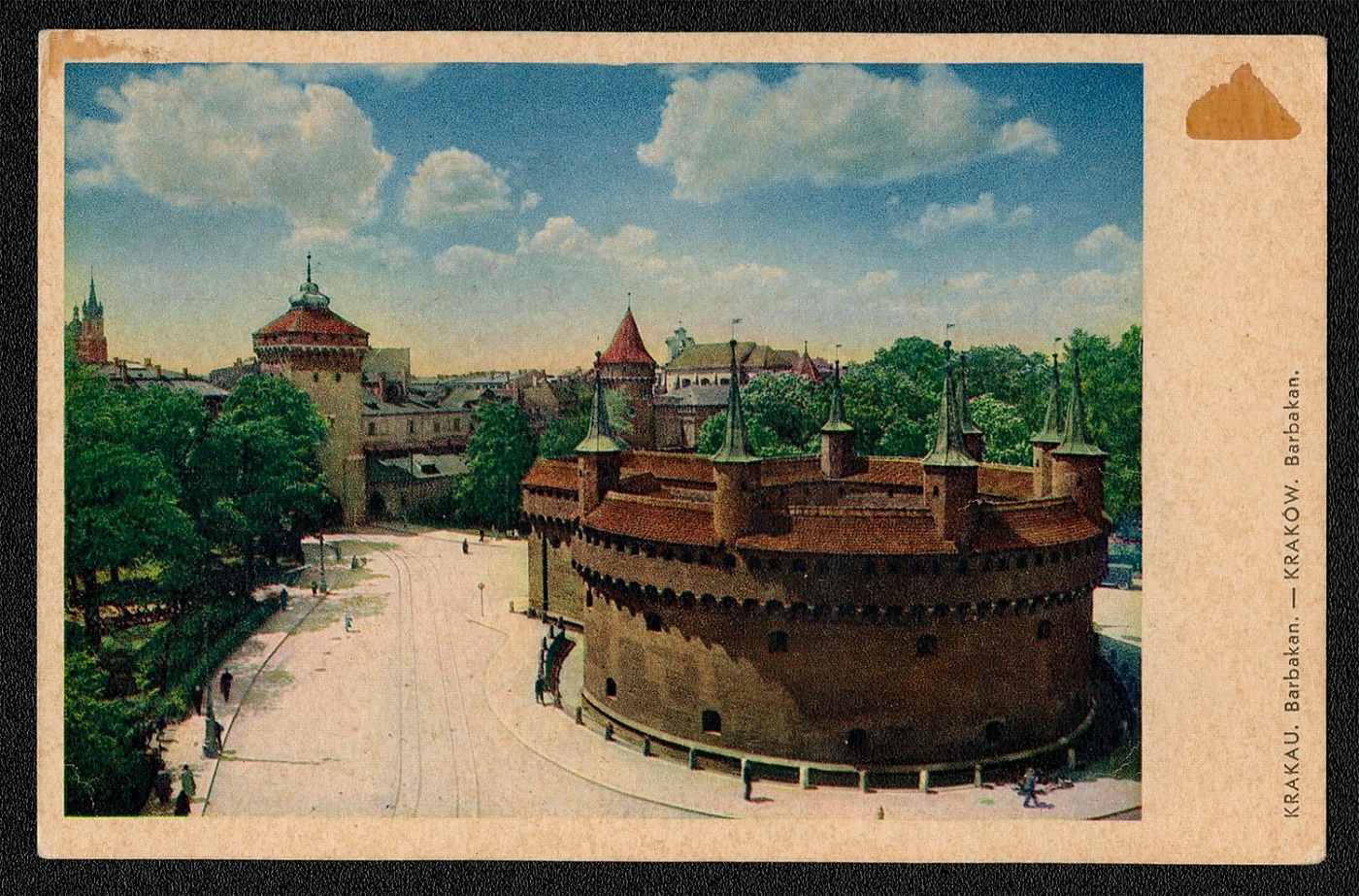
1941 Generalgouvernement The unrelated cancellation commemorates the incorporation of the Lemberg
Pre-war Polish photocard used as a souvenir card and franked with Scott N74 issued 22 May 1941. Krakau 1 August 1941. Depicted on the stamp and the photocard is the Barbakan or Rondel, and St. Florian’s Gate. The unusual circular structure, built in the Gothic style, dates back to 1498, and was part of the fortifications of the city of Krakau. The unrelated cancellation commemorates the incorporation of the Lemberg District into the Generalgouvemement territory. It shows the Hakenkreuz in a form of the sun with rays over the panorama of the city of Lemberg.
Unsold
3
$16
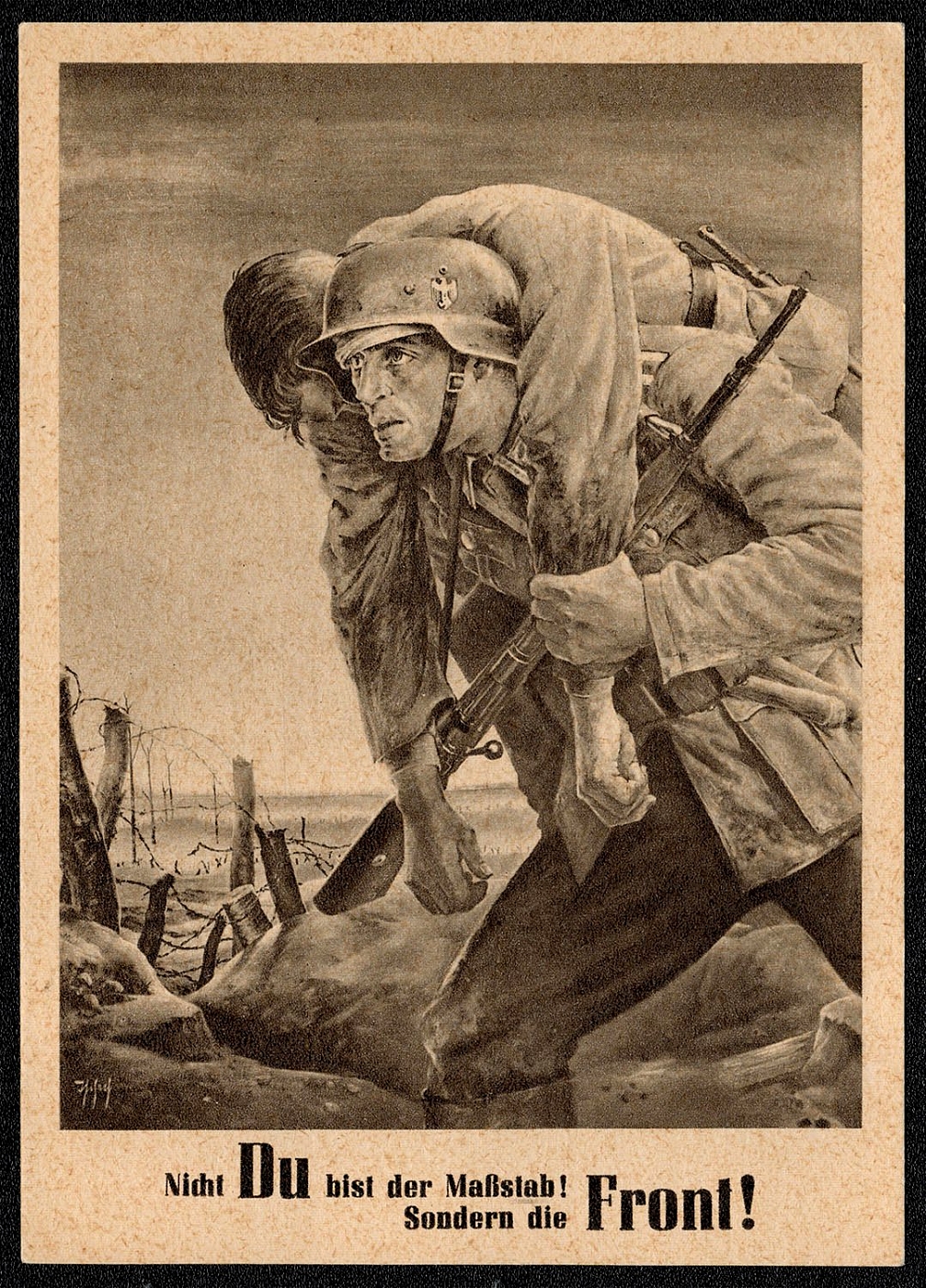
1943 NSDAP in the Generalgouvernement. Postal propaganda You are not the measure! On the contrary, it’s the Front!
Postal propaganda issued under German Occupation (Generalgouvernement) Commemorating the Day of the NSDAP in the Generalgouvernement Scott No. NB 29 depicting Cloth Hall, Krakau tied to a postal propaganda card in commemoration of the 3rd anniversary of the National Socialist German Workers Party in the Generalgouvernement. 13-15 August 1943, Krakau. You are not the measure! On the contrary, it’s the Front!
Sold for:
$16
4
-
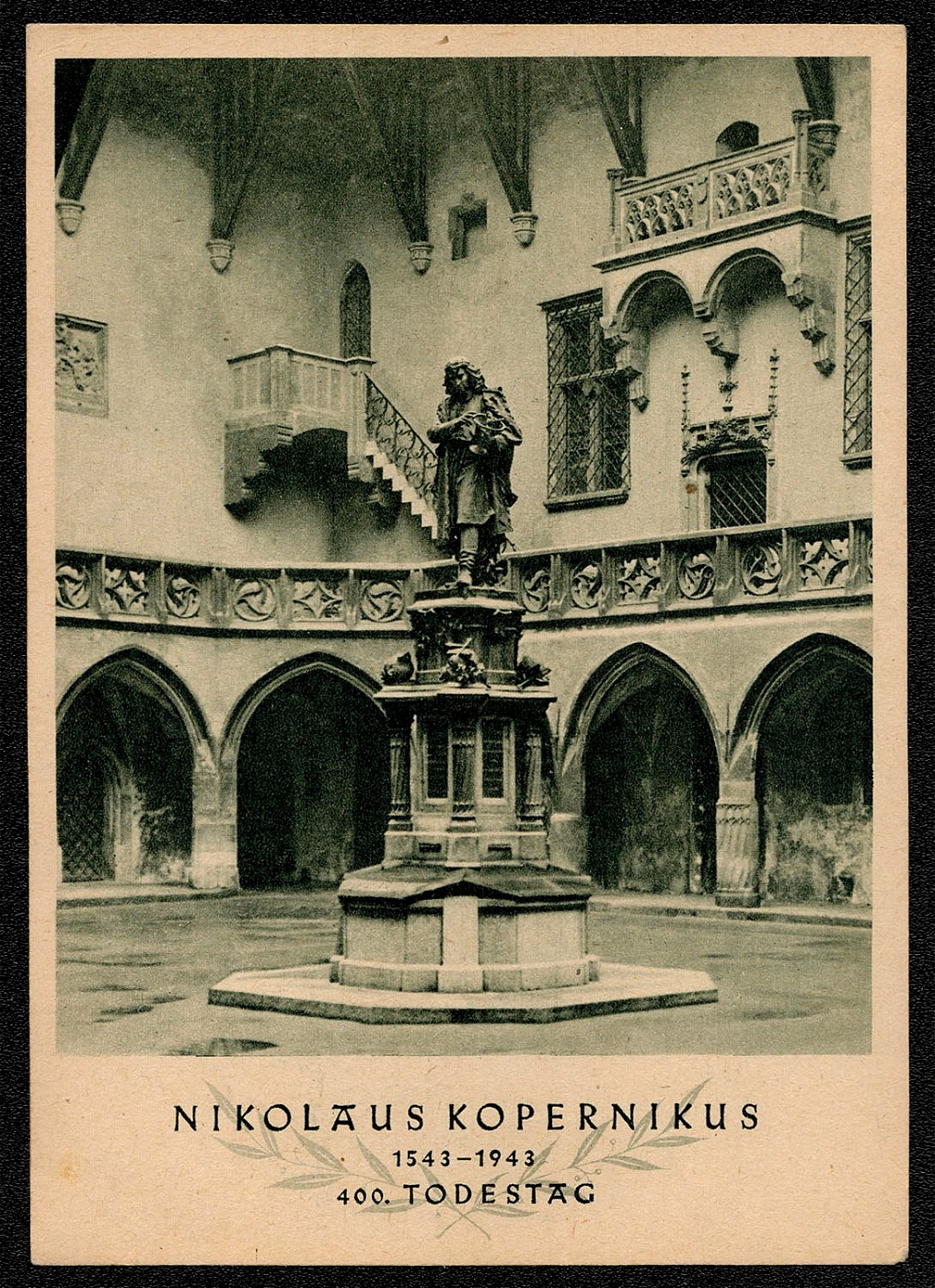
1944 Krakau The cancellation commemorates Five Years of the Generalgovernment
Souvenir card franked with Scott N91 issued 7 April 1944. Krakau 26 October 1944. The cancellation commemorates Five Years of the General Government and is the next to last Sonderstempel used in the General Government territories. It was also used in Hirschberg. Because of the rapid advance of the Russian armies throughout German occupied Poland, NSDAP postal activities were generally moving out and as of 20 January 1945 they ceased their services in Krakau.
Unsold
5
$25
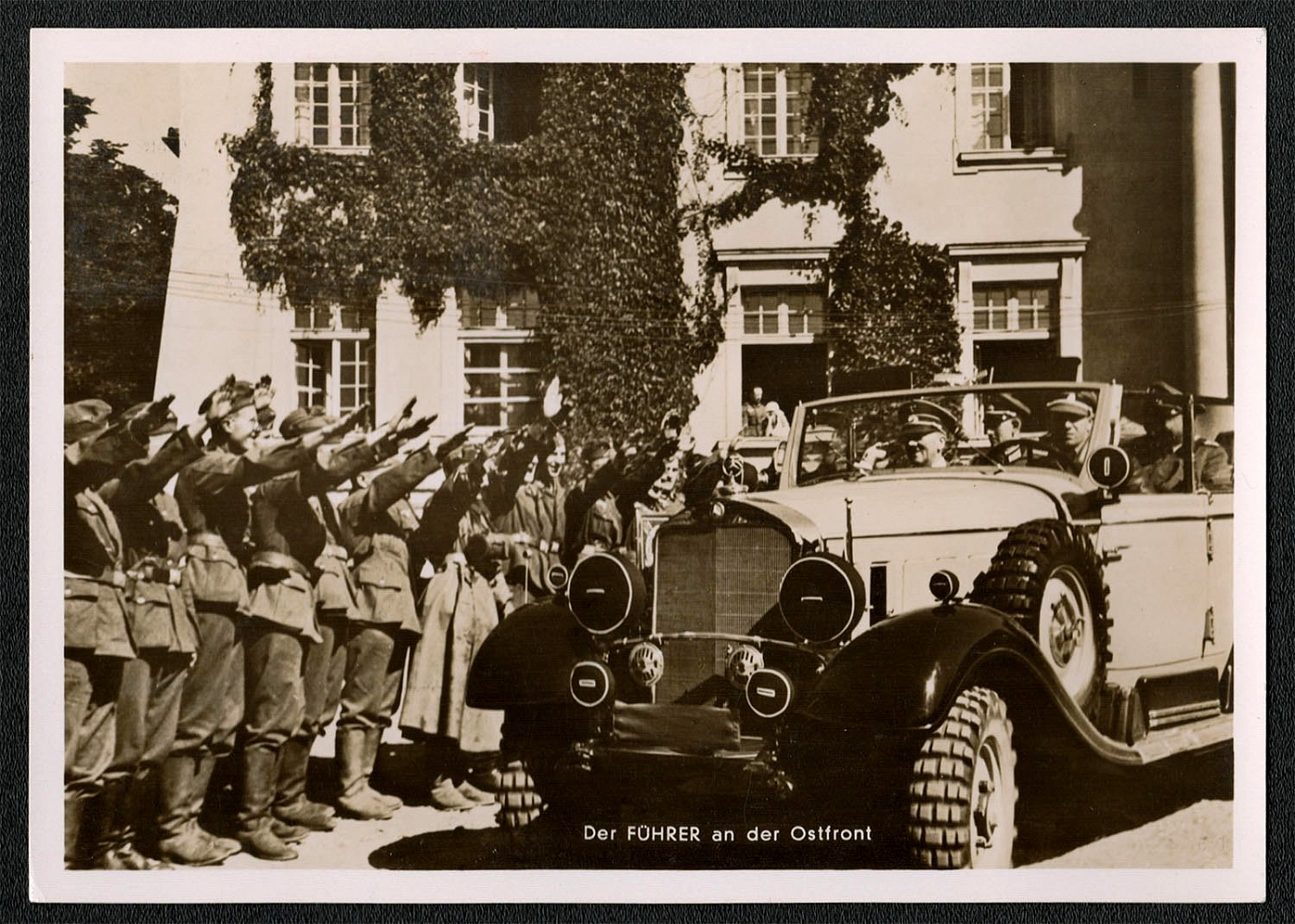
1941 Generalgovernment The Fuhrer on the Eastern Front Special cancellation commemorating Hitler’s 52nd birthday
Hoffman Photo Card posted in Krakau on 20 April 1941. “The Fuhrer on the Eastern Front.” Above: Scott No. N33 and N39 tied to Hoffman Photo Card with a special cancellation commemorating Hitler’s 52nd birthday. Posted in Krakau, 20 April 1941.
Sold for:
$25
6
$25
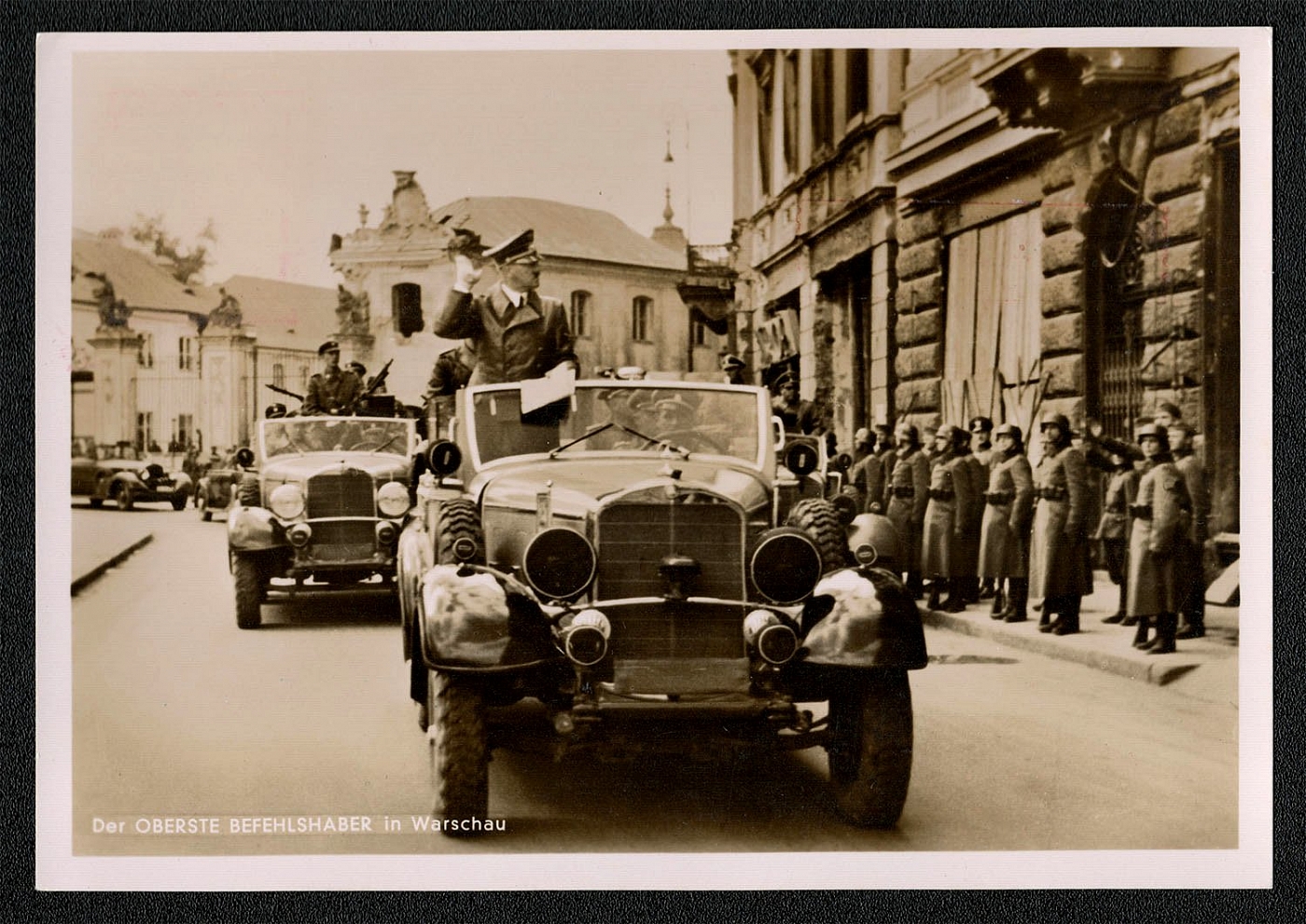
1941 Generalgovernment The Fuhrer on the Eastern Front Special cancellation commemorating Hitler’s 52nd birthday
Hoffman Photo Card posted in Krakau on 20 April 1941 “The Supreme Commander in Warschau.” Scott No. N33 tied to Hoffman Photo Card with a special cancellation commemorating Hitler’s 52nd birthday. Posted in Krakau, 20 April 1941.
Sold for:
$25
7
-
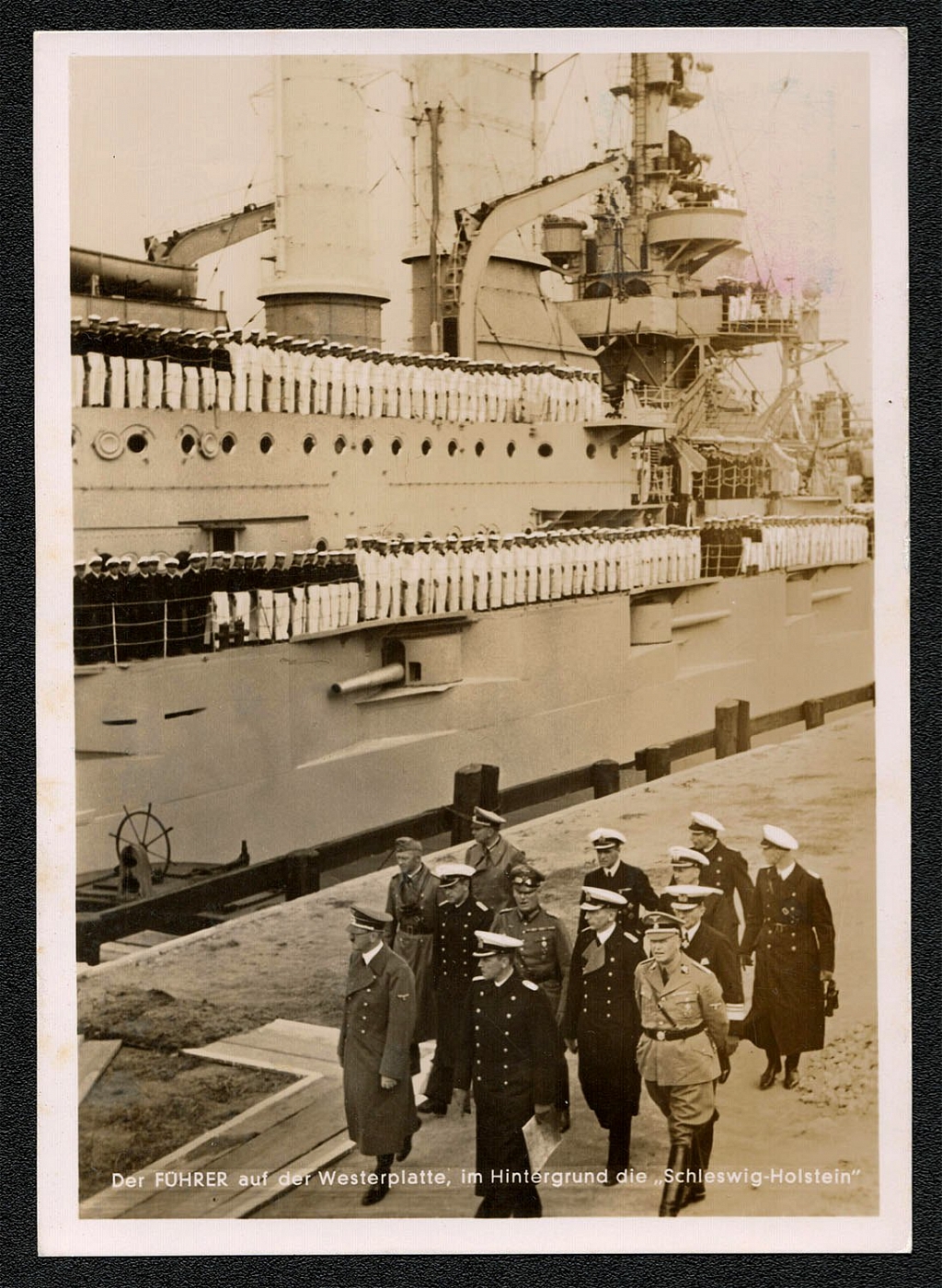
1940 Generalgovernment The Fuhrer at the Westerplatte, the “Schleswig-Holstein” in the background.
Hoffmann Photocard P75 franked with Scott N32 issued 8 March 1940. Prepared by the philatelic firm of Karl Hennig. Krakau 16 October 1940. The Fuhrer at the Westerplatte, the “Schleswig-Holstein” in the background. The war with Poland began 1 September 1939 with bombardment from the battleship Schleswig-Holstein. In December 1944 the venerable battleship succumbed to bombs and settled on an even keel in Gotenhafen on the Gulf of Danzig. The crew stubbornly manned their guns for another month before abandoning ship.
Unsold
8
-
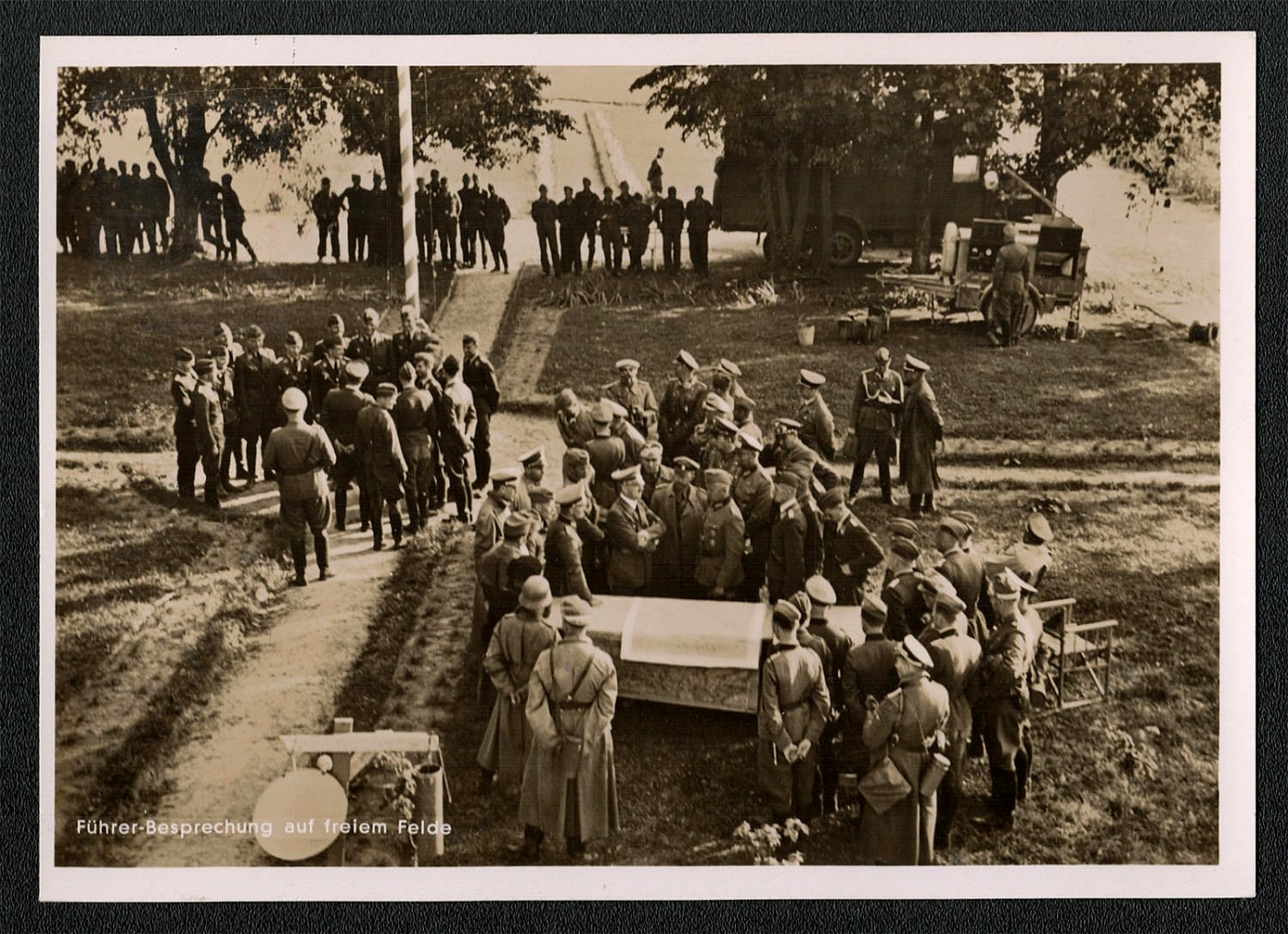
1940 A Fuhrer-conference in the open field. Generalgovernment Krakau
A Fuhrer-conference in the open field. Hoffmann Photocard P 73 franked with Scott N46 issued 8 March 1940. Prepared by the philatelic firm of Karl Hennig. Krakau 16 October 1940.
Unsold
9
$25
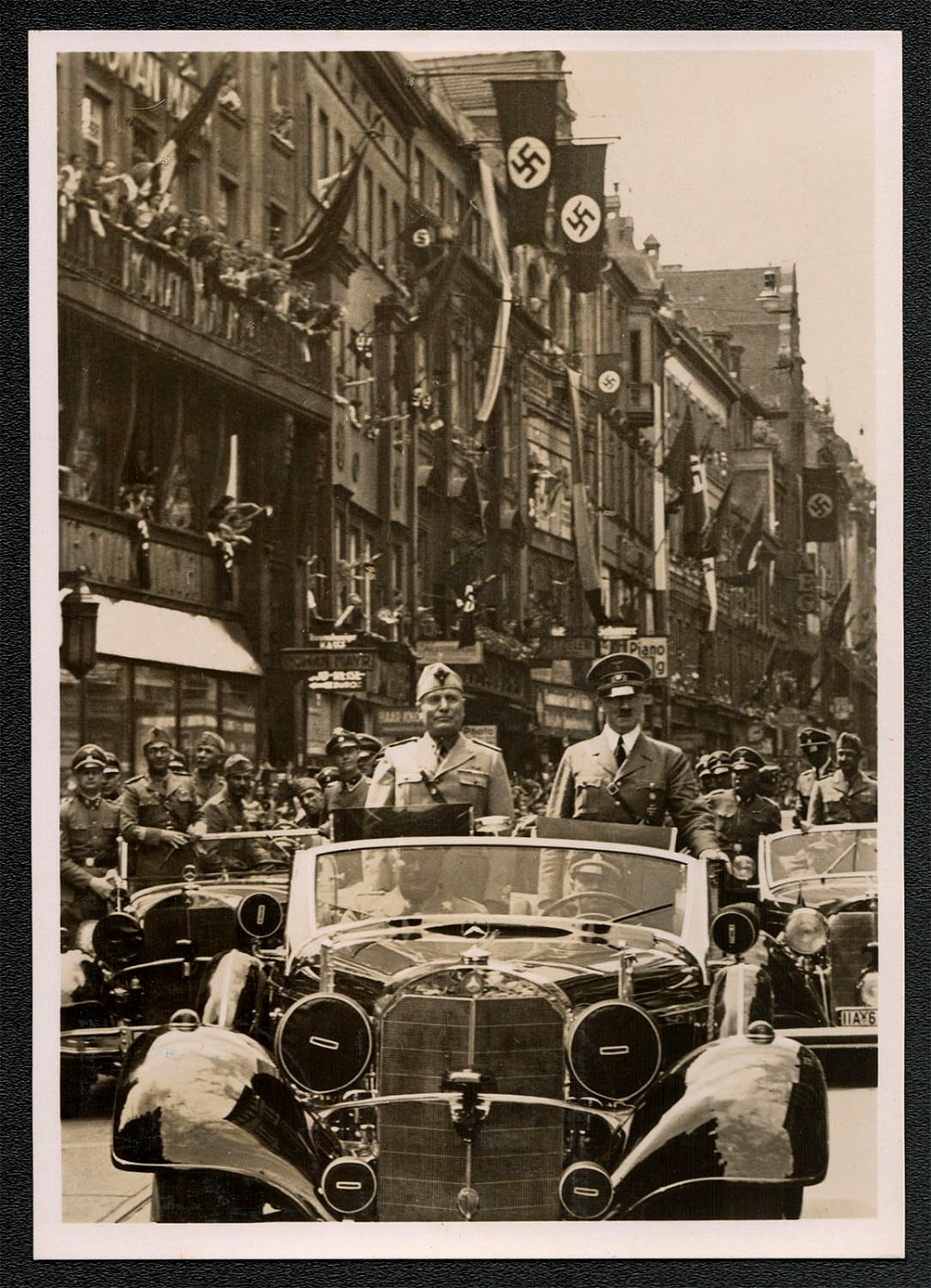
1940 Hitler and Mussolini in Munchen. Generalgovernment Krakau
Hitler and Mussolini in Munchen, June 1939. Hoffmann Photocard ML 5 franked with Scott N30 and N33-41 issued 8 March 1940. Prepared by the philatelic firm of Karl Hennig. Krakau 28 September 1940.
Sold for:
$25
10
$16
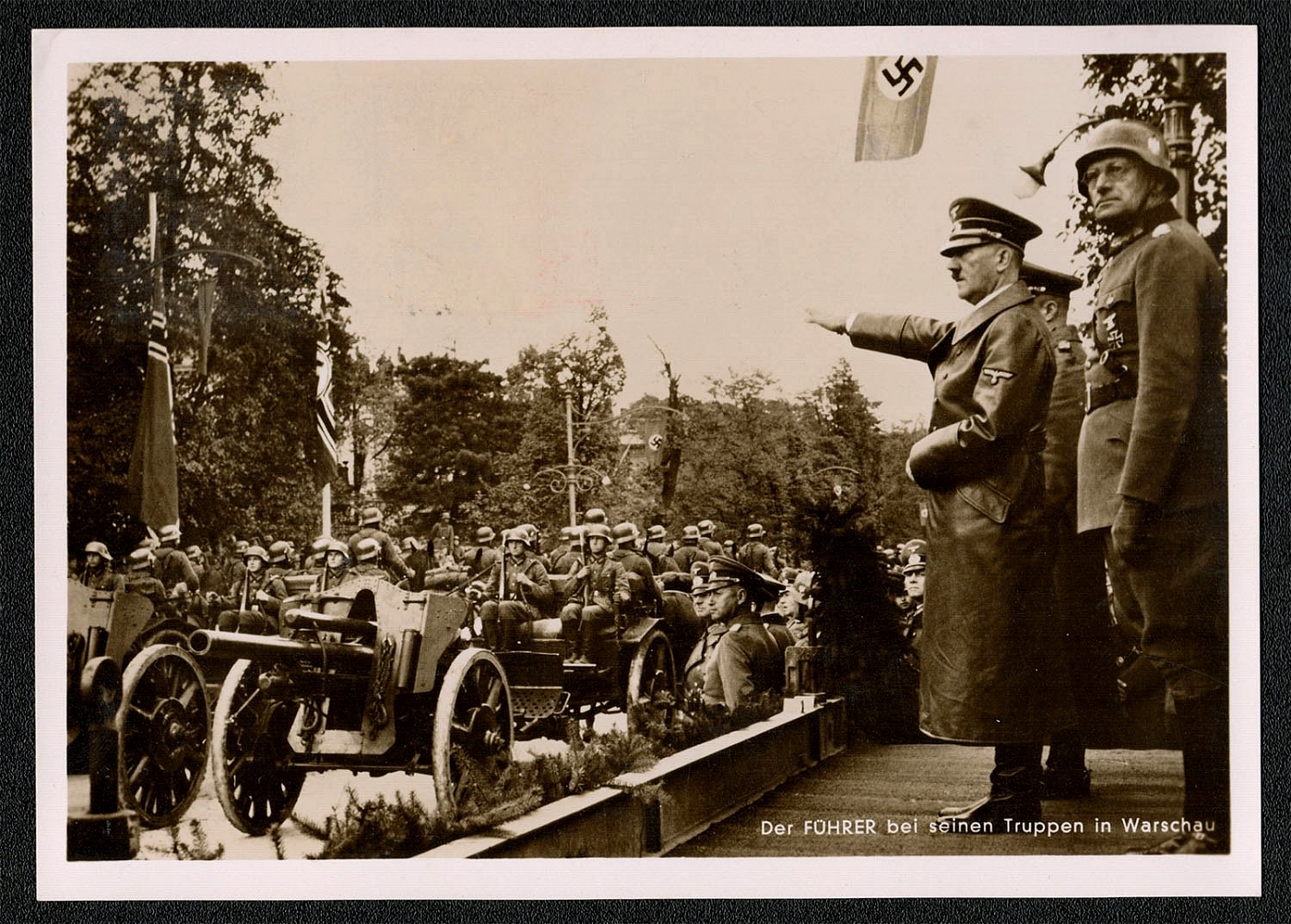
1941 The Fuhrer with his troops in Warschau Special cancellation commemorating Hitler’s 52nd birthday
Hoffman Photo Card posted in Radom on 20 April 1941 “The Fuhrer with his troops in Warschau.” Scott No. N38 tied to Hoffman Photo Card with a special cancellation commemorating Hitler’s 52nd birthday. Posted in Radom, 20 April 1941.
Sold for:
$16
11
$20
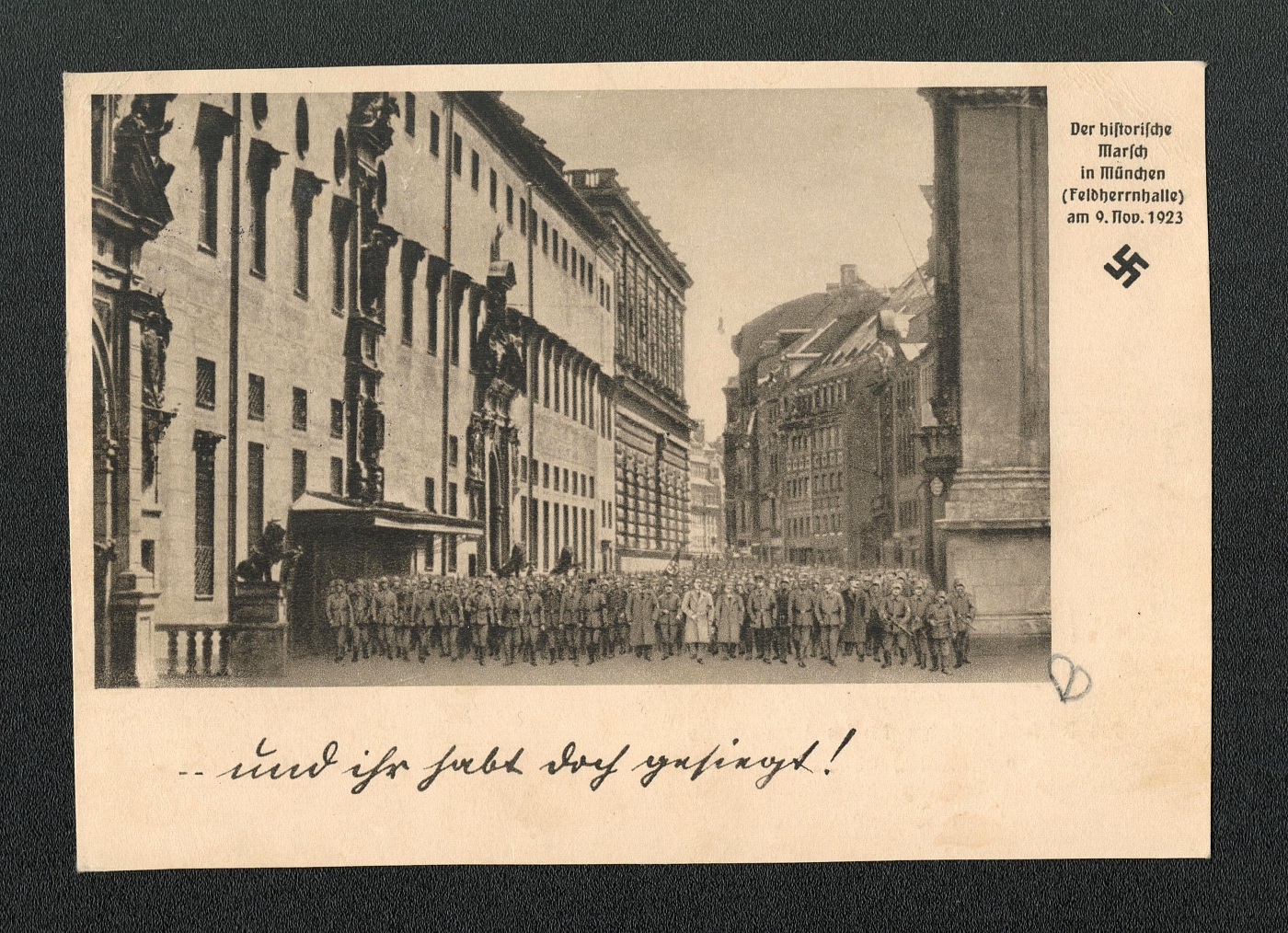
1933 The Historical March in Munich NSDAP propaganda
1933 The Historical March in Munich NSDAP propaganda
Sold for:
$20
12
$30
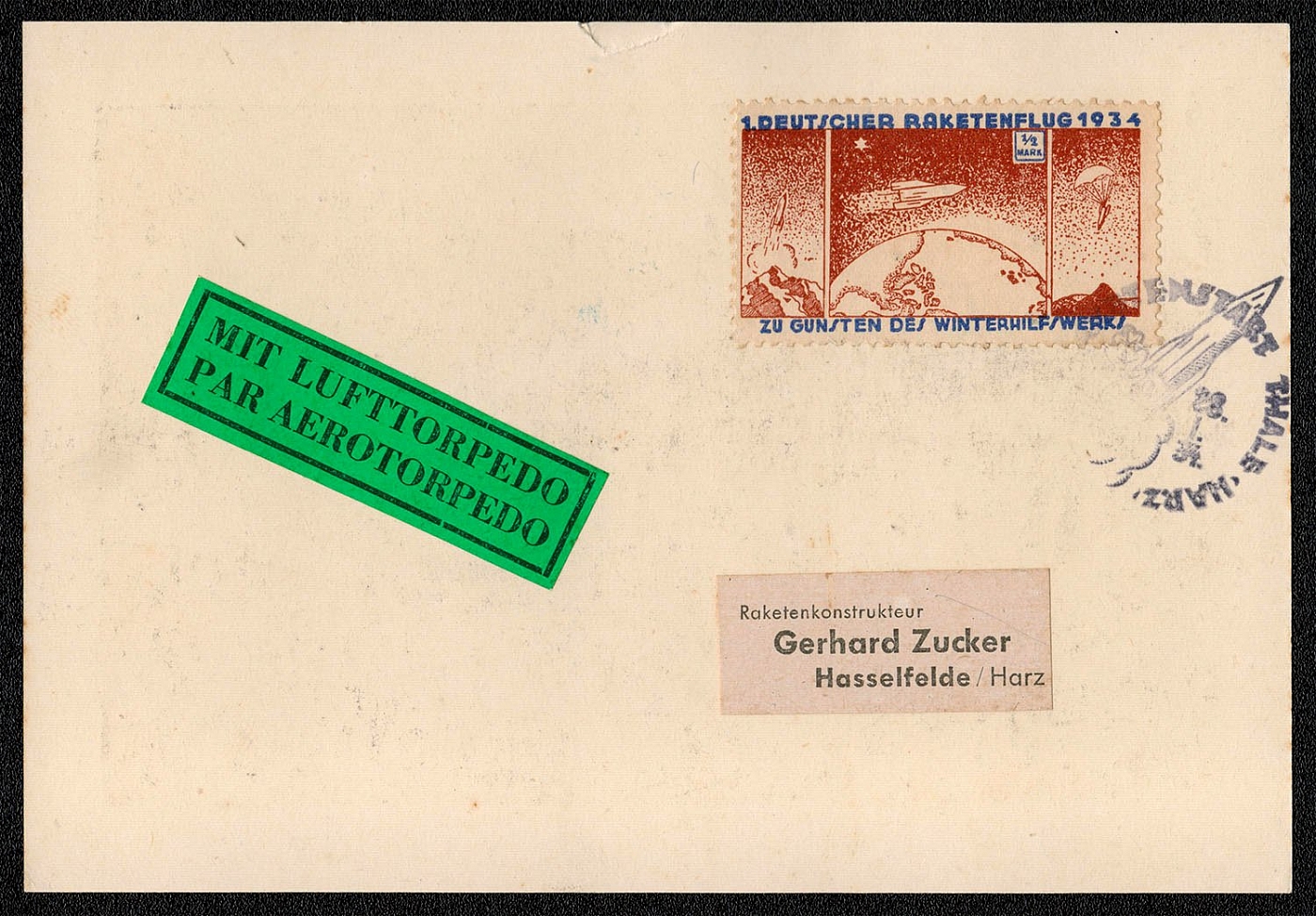
1934 Rocket Mail. Privately Printed Post Card The photo is of an early 1930s rocket experiment showing the rocket builder and N.S.D.A.P. officials.
Privately Printed Post Card The photo is of an early 1930s rocket experiment showing the rocket builder and N.S.D.A.P. officials. Privately printed post card for the benefit of the N.S.D.A.P. Winterhilfwerk (Winter Charity Relief Fund). The “stamp” depicts the First German Rocket Flight of 1934. The card was “posted” in Thale, Harz on 28 January 1934 to Gerhard Zucker, the rocket constructor, in Hasselfelde, another village in Harz. Harz, the most northerly mountain range in Germany, lies between the Weser and Elbe rivers, occupying parts of the German Lander (states) of Lower Saxony and Saxony-Anhalt.
Sold for:
$30
13
-
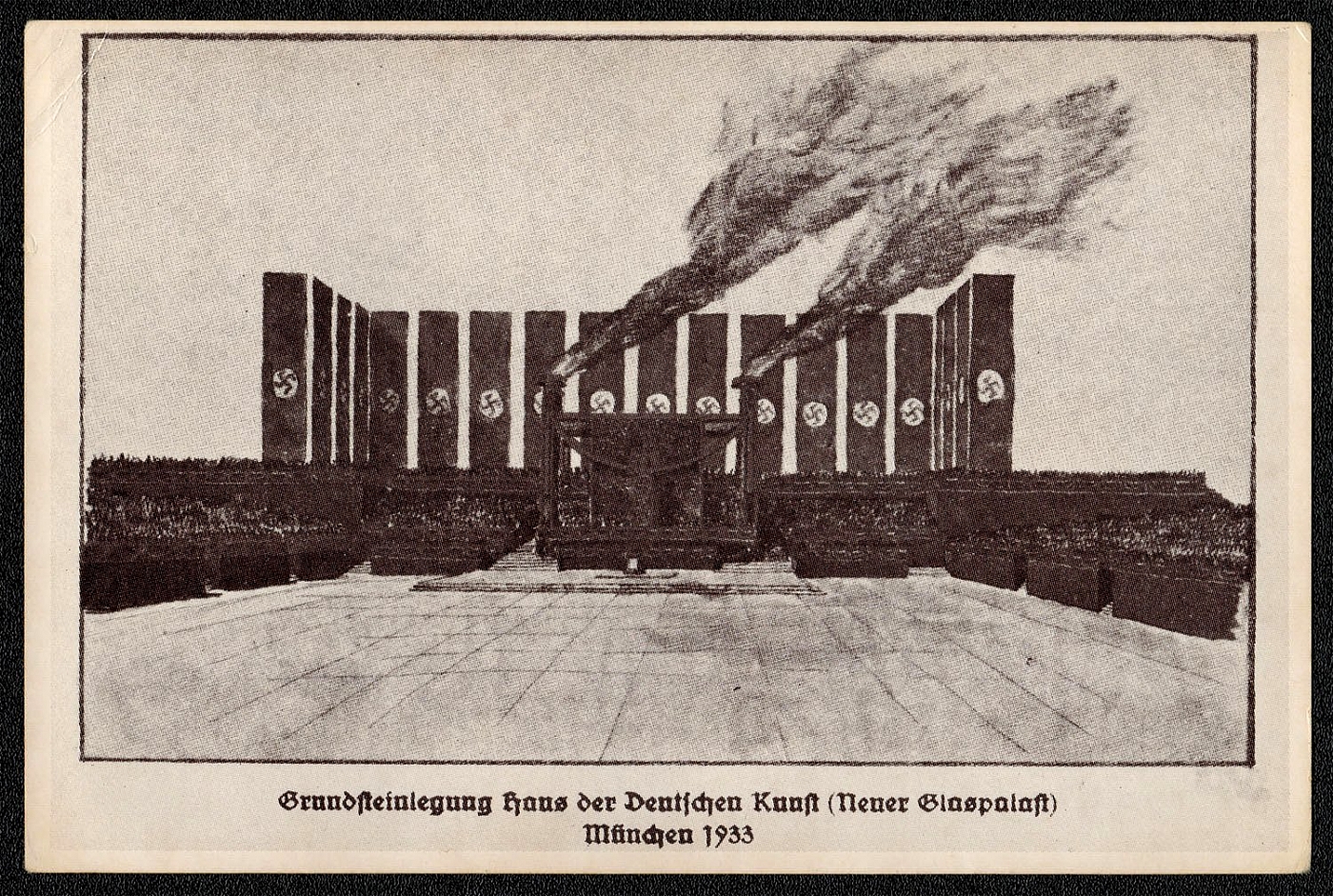
1933 Laying of the foundation stone of the House of German Art. Munich
Laying of the foundation stone of the House of German Art (New Glass Palace) Munchen 1933 Published by the N.S.D.A.P. Gauleitung (Area Commander) of Munchen-Oberbayern Printed by Hermann Sonntag & Co. The House of German Art was designed by Paul Troost as a replacement for the Glass Palace which had burned in 1931. Hitler laid the cornerstone on 15 October 1933 (on which occasion his silver hammer broke). The building was not completed until 1937, however. Although it was celebrated as “the first beautiful building of the new Reich,” the public did not accept its angular architecture. The building survived the war nearly intact.
Unsold
14
$16
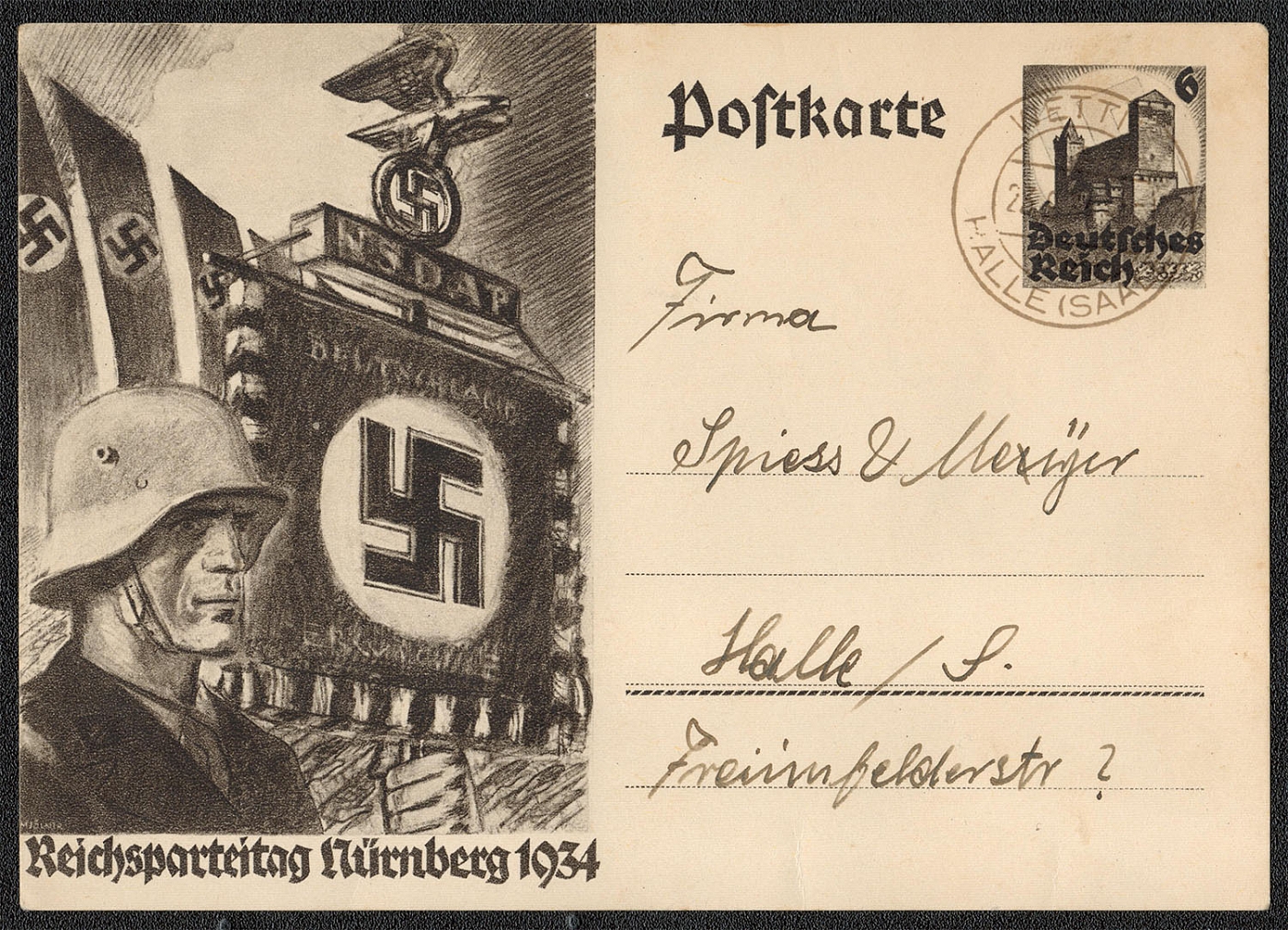
1934 Michel P 252 posted 23 September in Wetti, a Halle (Saar) district.
1934 Michel P 252 posted 23 September in Wetti, a Halle (Saar) district.
Sold for:
$16
15
-
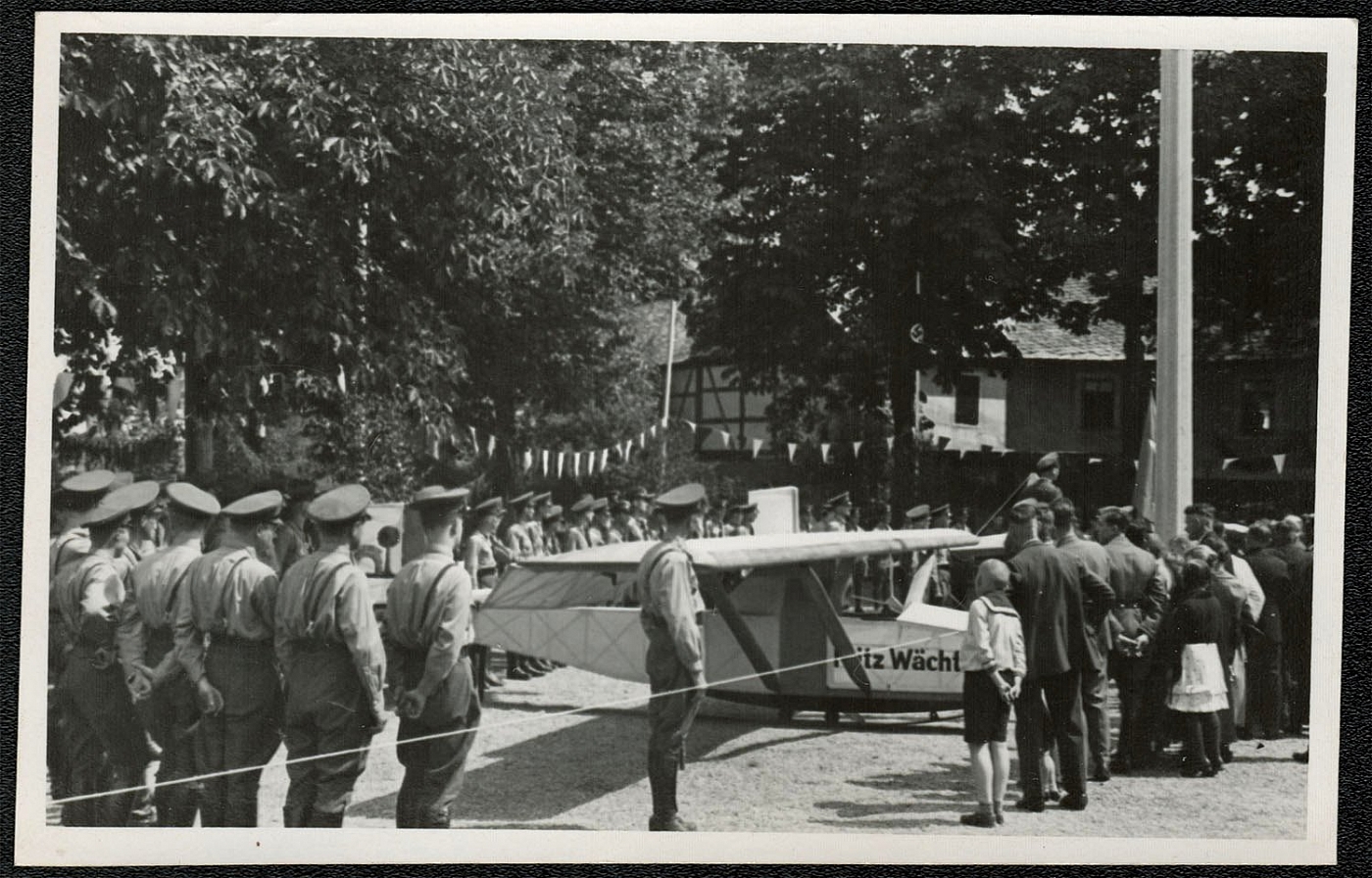
Unmailed, undated photo post card apparently published by the Agfa Film Corporation.
Unmailed, undated photo post card apparently published by the Agfa Film Corporation. It is believed that the photo is a Nationalsozialistisches Flieger-Korps (NSFK) or National Socialist Flyers Corps event with gliders. The NSFK was an SA subdivision, but admitted SS men with valid pilot licenses and outstanding aviation skills.
Unsold
16
-
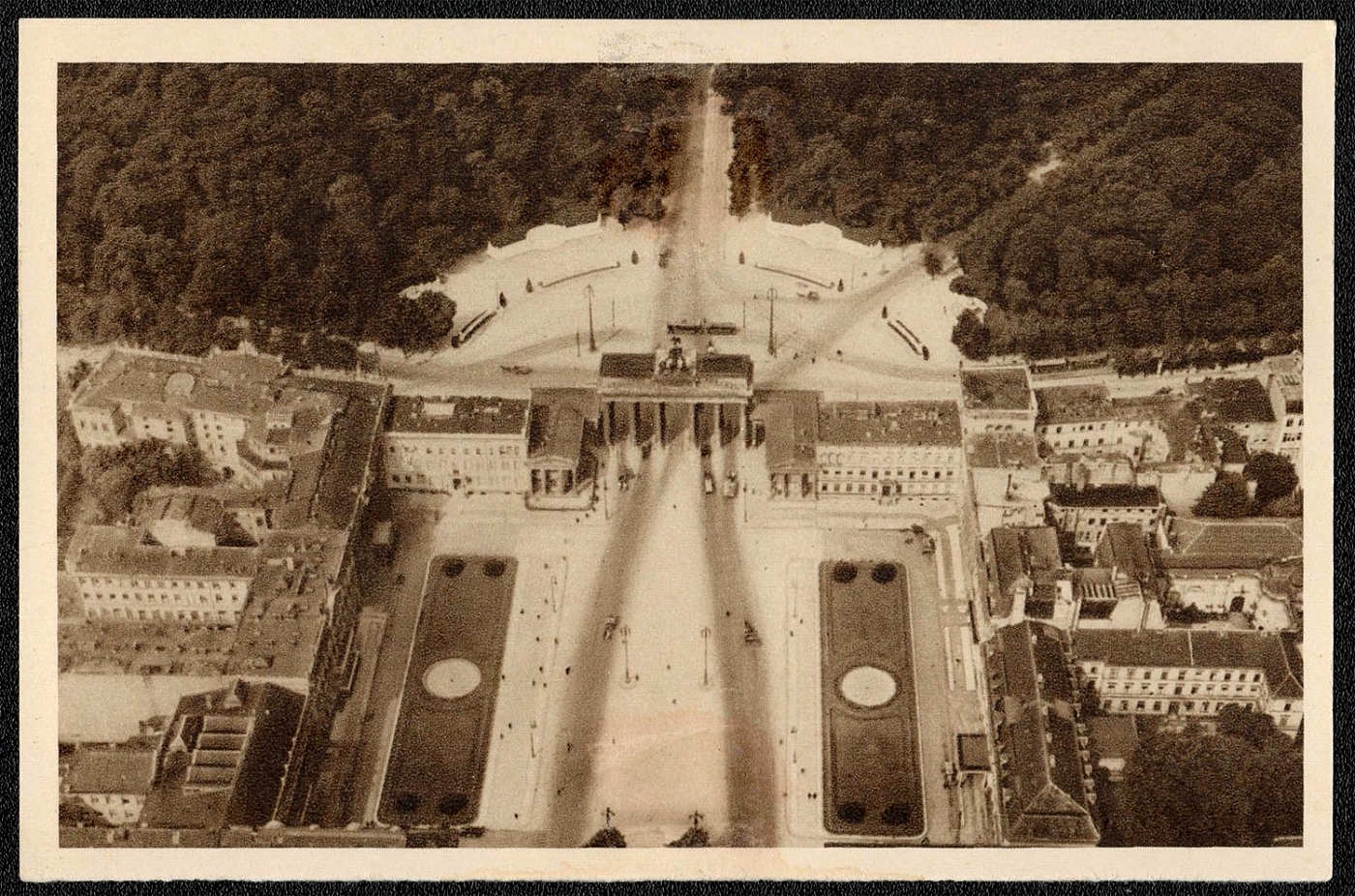
1934 Special Postal Card for 1934-35 Winterhilfswerk-Lotterie (Winter Charity Lottery).
Beautiful Germany Picture 149: Berlin, Brandenburg Gate Michel P 254, Issued 29 December 1934 Special Postal Card for 1934-35 Winterhilfswerk-Lotterie (Winter Charity Lottery). The Brandenburg Gate (Brandenburger Tor) is the only remaining town gate of Berlin. Located at the west end of the avenue Vnter den Linden, it was built in 1788-91 by Carl Langhans after the model of the Propylaea in Athens. As Berlin’s arch of triumph, it was surmounted by the famous “Quadriga of Victory,” a statue of a chariot drawn by four horses. The entire structure was heavily damaged during World War II, but the gate was restored in the late 1950s and the statue recast from the original molds.
Unsold
17
$45
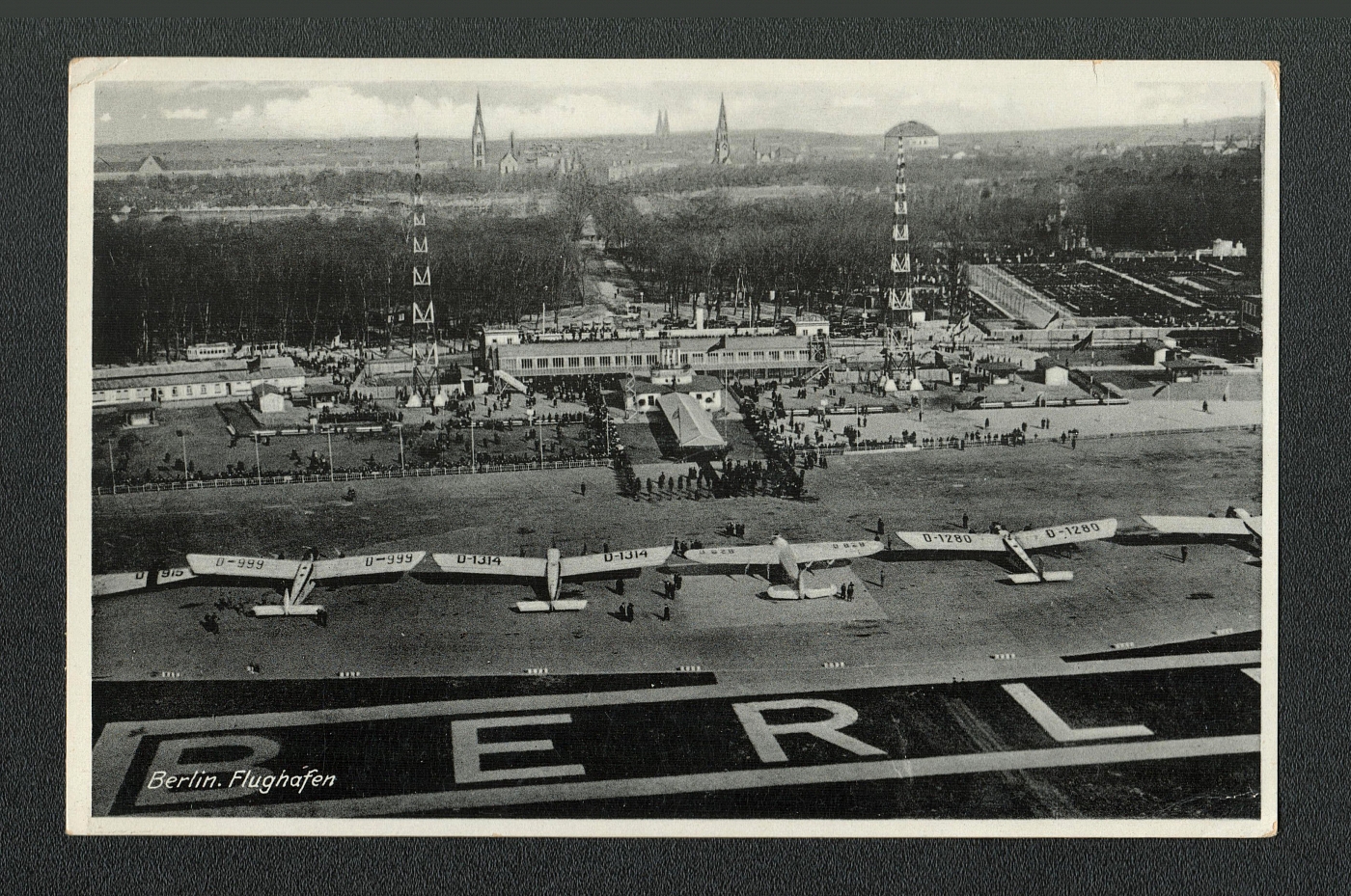
1935 Berlin Airport. Postcard sent to Denver USA
1935 Berlin Airport. Postcard sent to Denver USA
Sold for:
$45
18
-
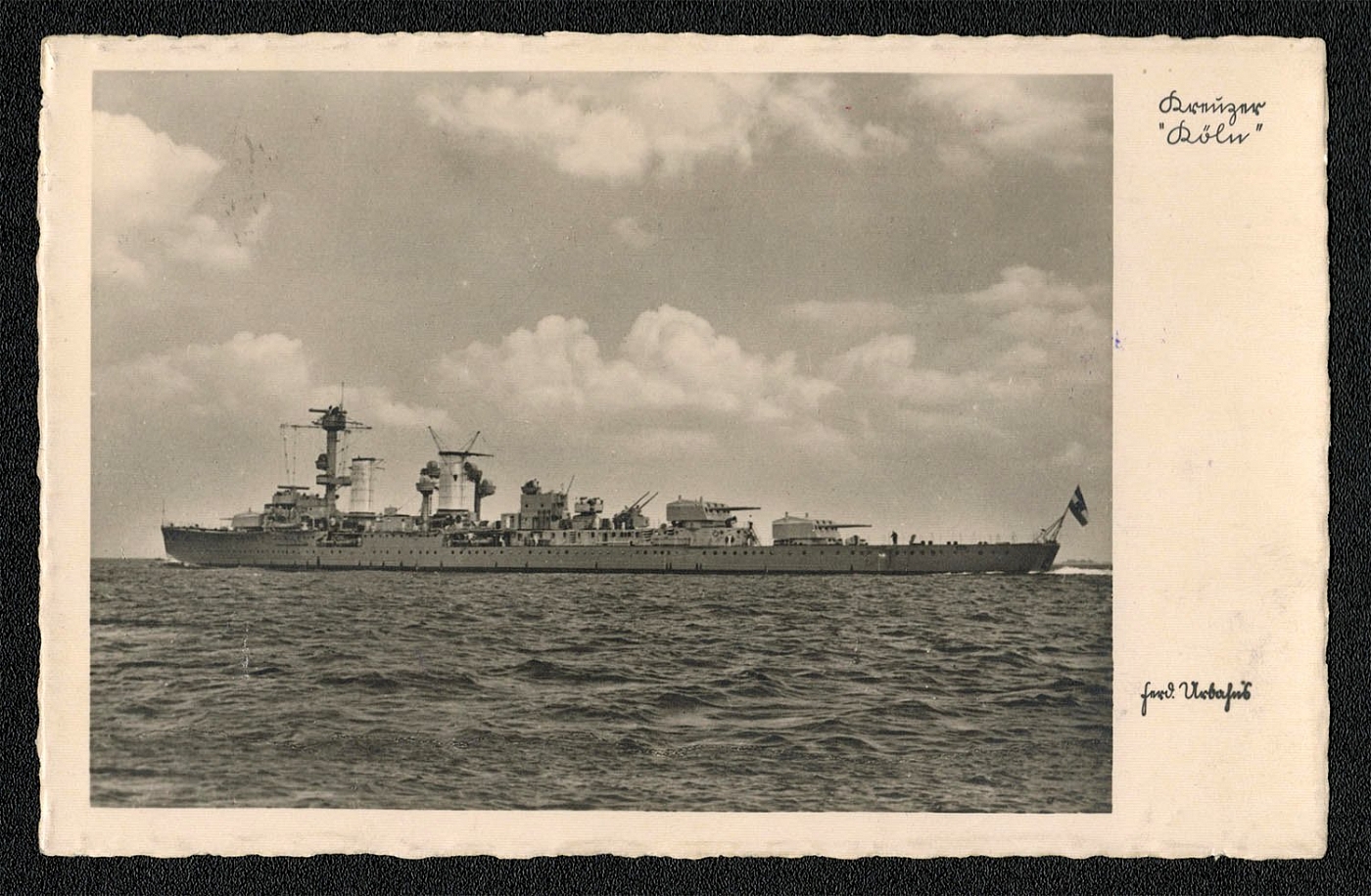
1935 Navy Week Card with photo and postmark of Cruiser Koln
1935 Navy Week Card with photo and postmark of Cruiser Koln
Unsold
19
-
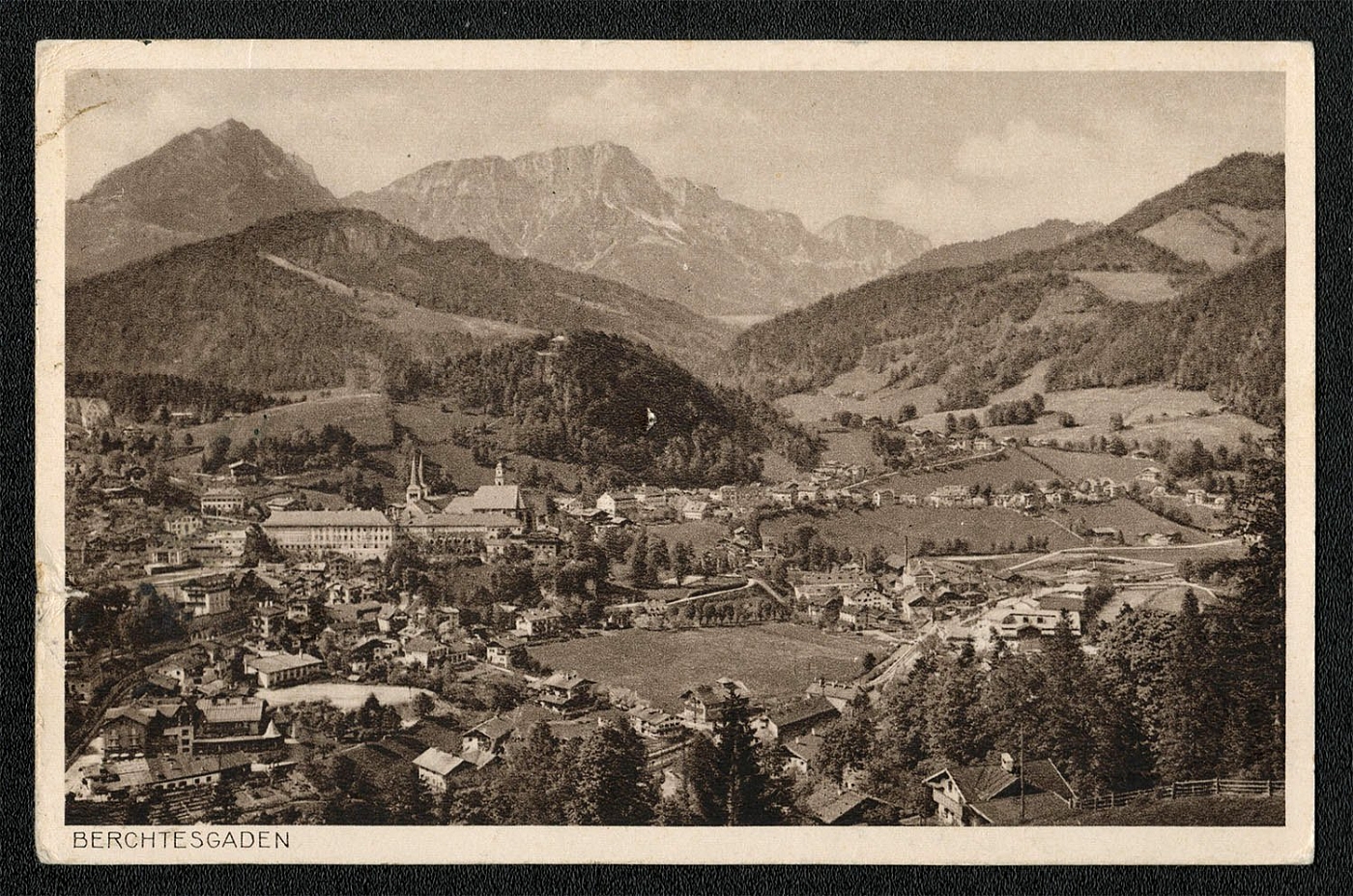
20
-
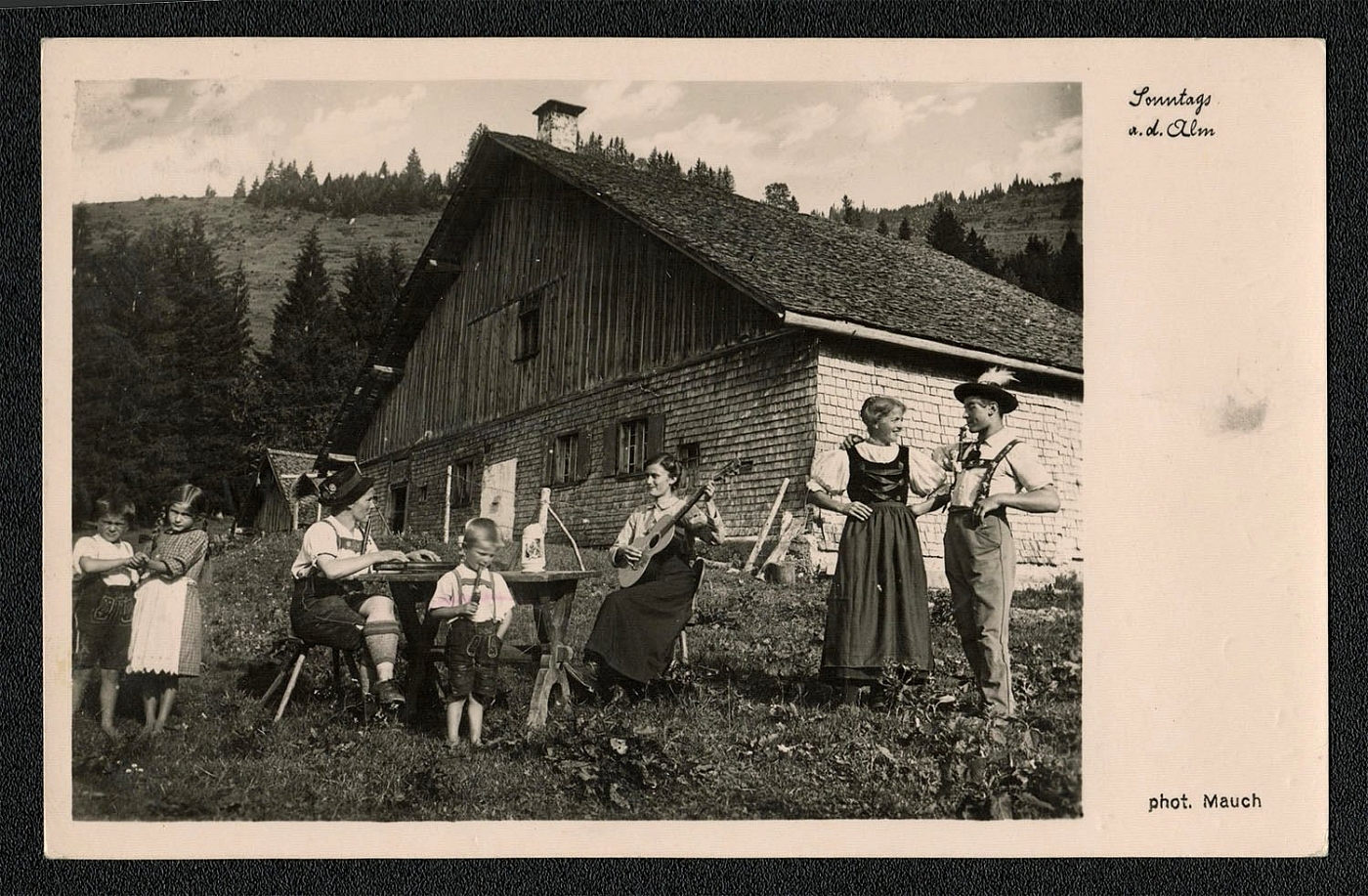
21
-
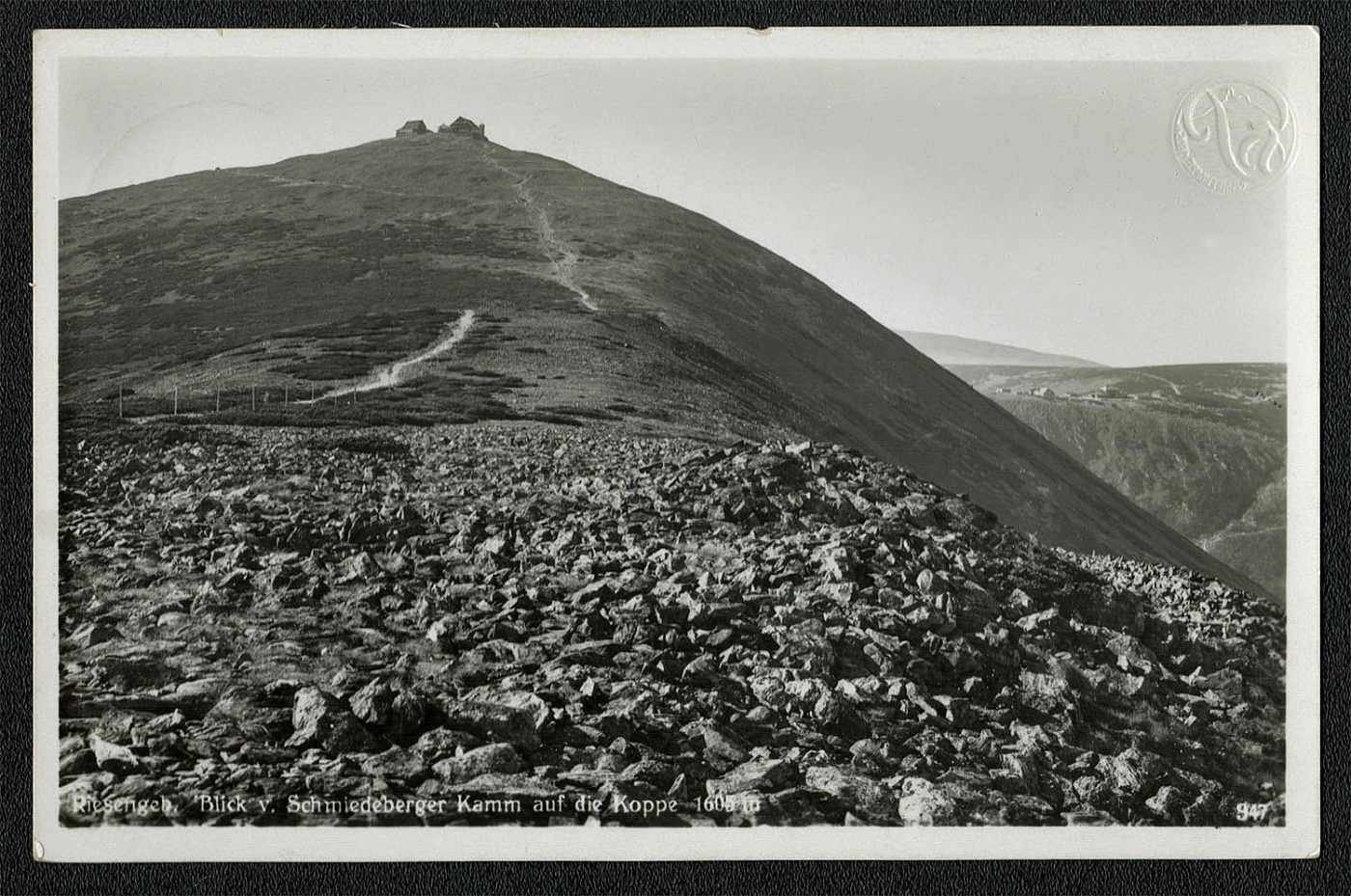
1935 Photo postcard View on Riesageberge (Giant Mountains)
1935 Photo postcard View on Riesageberge (Giant Mountains)
Unsold
22
-
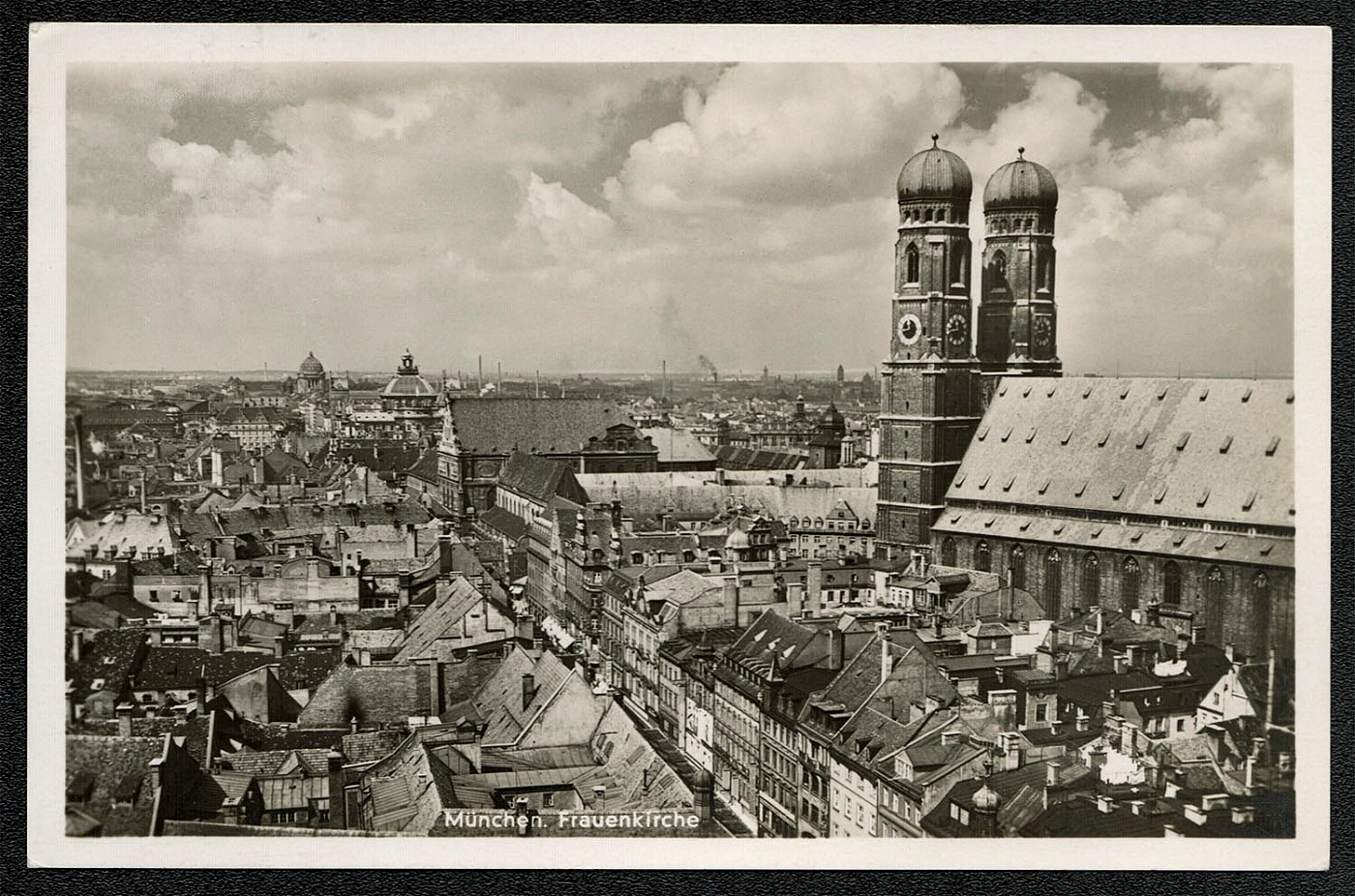
1935 Photo postcard Munich Frauenkirche mailed 23 March from Rosenheim
Munich Frauenkirche The Frauenkirche is an imposing brick edifice 320 feet long, 120 feet broad, and 110 feet high. The nave and aisles (of equal height), ambulatory, and unusually lofty side-chapels (between the buttresses, which are on the inside), were erected by Jorg Ganghofer in 1468-88 on the site of an earlier church. The two towers, 329 feet high, covered after 1512 with round caps of green copper, are a distinctive feature of Miinchen. Since the creation of the archbishopric of Munchen and Freising in 1817, the Frauenkirche has been the metropolitan church of Bavaria. Published by A. Lengauer, Munchen. Picture postcard mailed 23 March 1935 from Rosenheim. Franked with the 6 Rpf value of the Saarabsiintmung Issue of 1935. Rosenheim, at 1447 feet elevation, was an industrial town of approximately 19,000 inhabitants in 1935. The town, long a trading place on the road from Italy to the north, had many houses showing a mixture of Italian and German architecture.
Unsold
23
$10
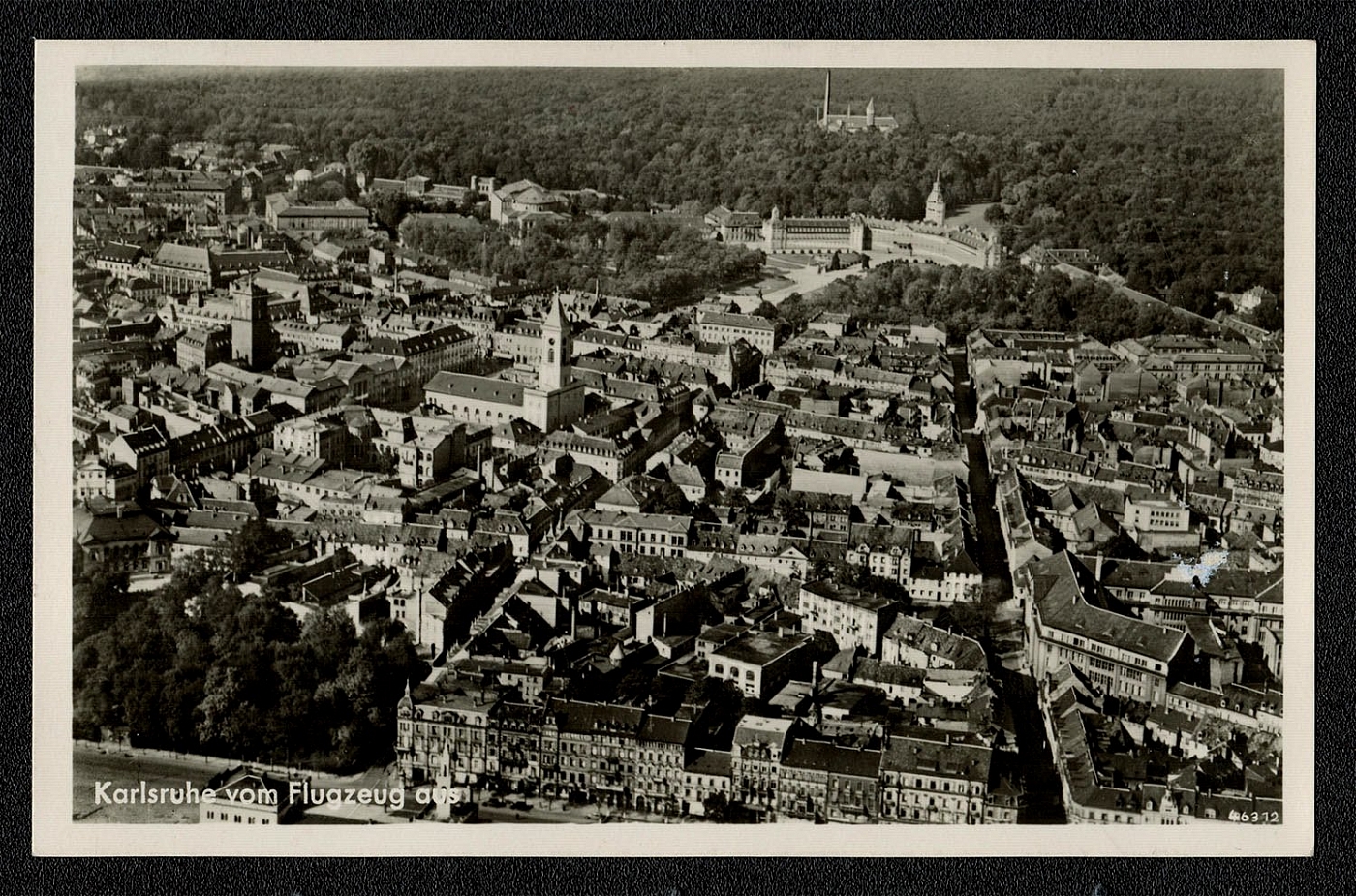
1935 Karlsruhe from an airplane The pictorial cancellation (Bachmann Karlsruhe 23)
Picture postcard mailed 6 July 1935 from Karlsruhe. Franked with the 6 Rpf value (Heinrich Shiitz) of the Shiitz-Bach-Handel Issue of 1935. The pictorial cancellation (Bachmann Karlsruhe 23) National Organization for Physical Exercise 25-28 July 1935 Karlsruhe College Contests Karlsruhe from an airplane With a population of approximately 150,000 in 1935, Karlsruhe, situated 6 miles from the Rhine, was the capital of the former state of Baden. It owes its origin and name (“Charles’s Rest”) to Margrave Karl Wilhelm von Baden-Durlach (1709—38). The plan of the old town resembles a fan, the streets radiating from the palace, the tower of which is visible at every crossing. In the 1930s, Karlsruhe had considerable industrial importance, its principal manufactures being locomotives, stoves, soap, and perfumes. It was heavily damaged in World War II. Published by Hansa-Luftbild G.m.b.H. Archiv der Bad.-Pfalz Luft-Hansa A. G., Mannheim.
Sold for:
$10
24
-
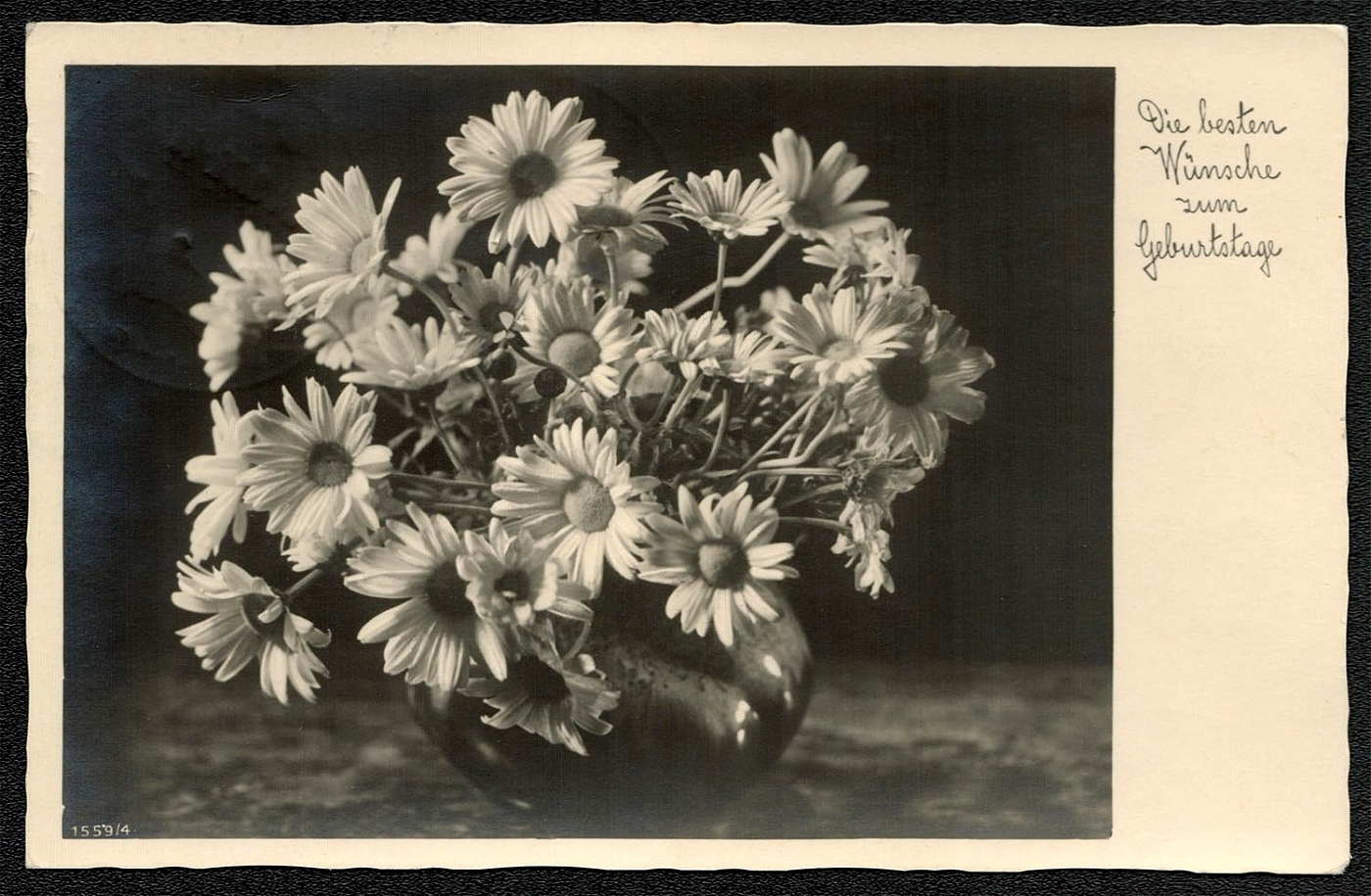
1935 Gonningen Photo postcard franked with Scott 432, 452 and 454 meeting the 15 Rpf postal rate to the United States
Post card franked with Scott 432, 452 and 454 meeting the 15 Rpf postal rate to the United States. Mailed from Gonningen (Wiirtteinberg) 4 September 1935. Although Gonningen is briefly mentioned in the 1929 edition of Baedeker’s Southern Germany as 10 miles east of Reutlingen (which is approximately 25 miles south of Stuttgart), this apparently tiny village at 1760 feet altitude in the Schwabische Alb, does not appear on the 1938 edition of the map published by Der Deutsche Automobil-Club, or in more recent maps of Germany. Gonningen nevertheless was prominent enough to merit its own special cancellation: (Widely known seed shipment) Wiirttemberg, a former German state, lost sovereignty to the Reich in 1934. The Schwabische Alb is an undulating limestone plateau forming the central part of the Swaben region in southern Germany, broadly intersected by picturesque valleys. It is about 130 miles long and 10-25 miles wide.
Unsold
25
-
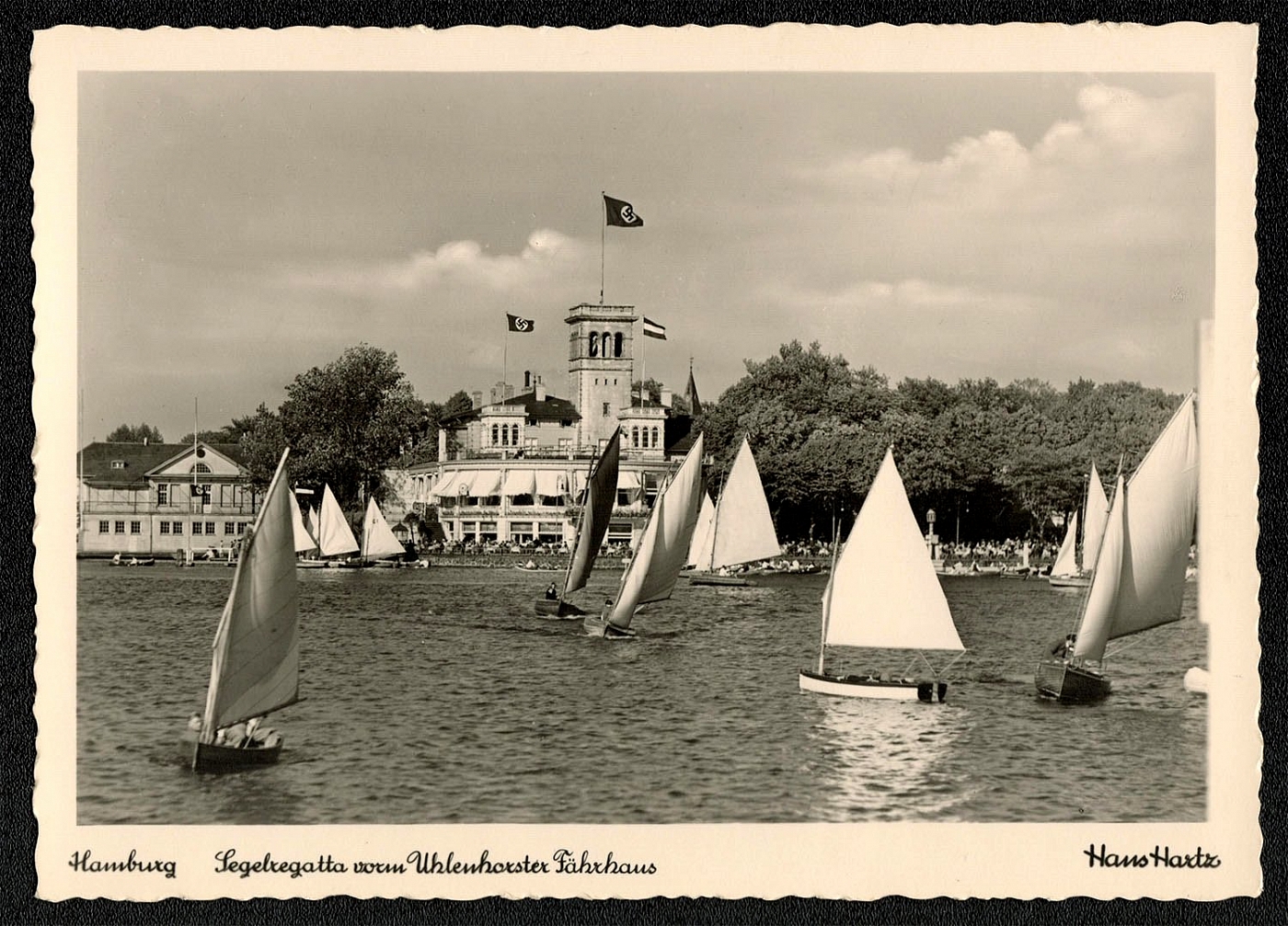
1936 Hamburg Sailing Regatta in front of the Ferry House
Hamburg Sailing Regatta in front of the Ferry House Original Photo by Hans Hartz Published by Verlag Hans Andres, Hamburg 1 Nr. 7347
Unsold
26
-
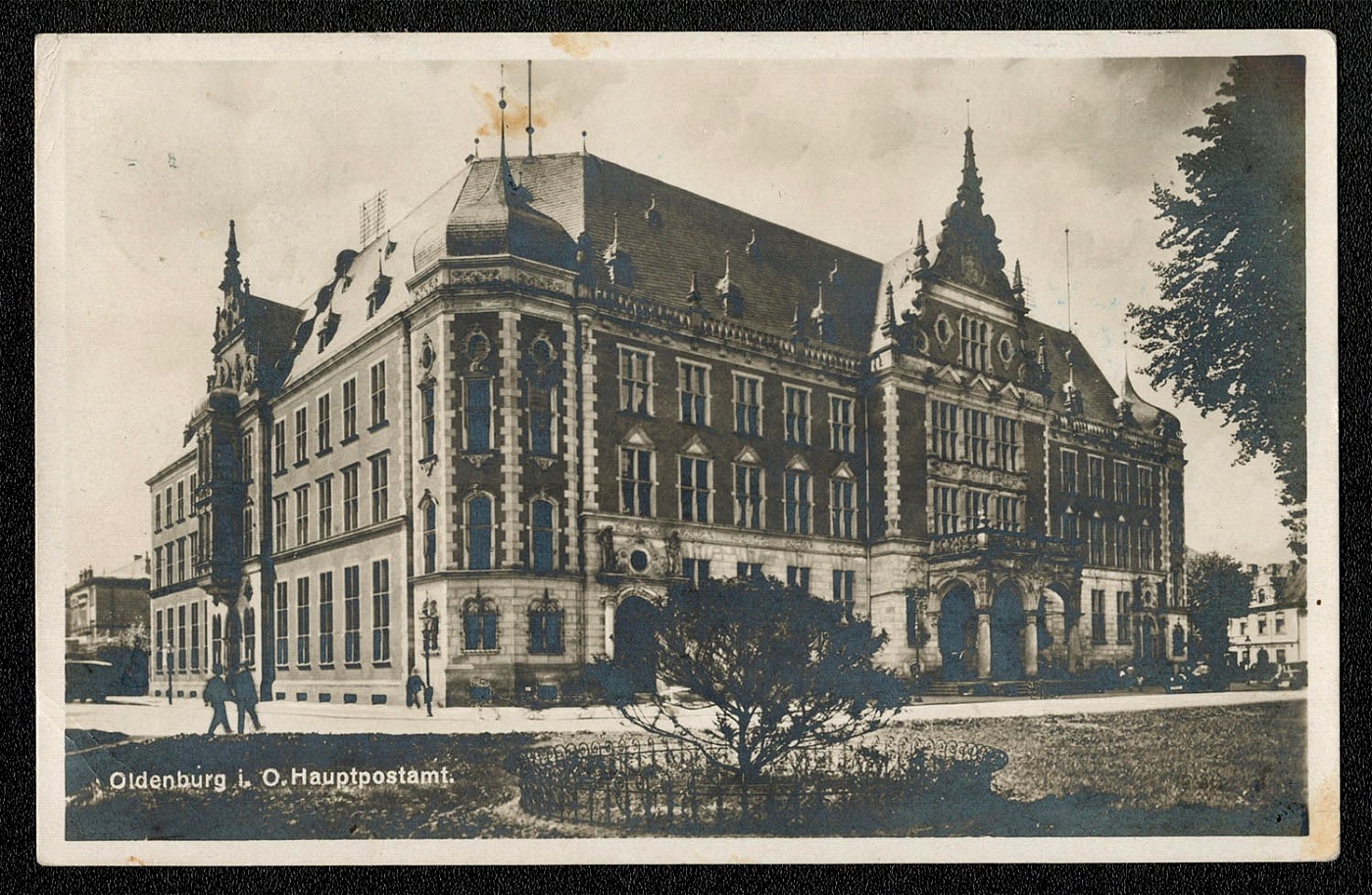
1936 The Main Post Office of Oldenburg Photo postcard
"The Main Post Office of Oldenburg in Oldenburg. Oldenburg, the capital of the former state of Oldenburg is an industrial and commercial city on the Hunte River, 80 miles west of Bremen. A major river port, it is known for its 13""' century church. The population of Oldenburg in the 1930s was 66,950. Post card No. 852 printed by Paul Andreas, Bremen. Franked with Scott Nos. 416 and 422. Posted in Apen, 6 July 1936. (The location of Apen has not been determined.) The message sent to Mrs. C. Toepfer of Millington, New Jersey reads as follows: “I find it very nice out here, everybody happy, no excitement, better than I expected it. Best regards also to Mr. Toepfer . . . from Mrs. L. Seghorn” “The Germans heard vaguely in their censored press and broadcasts of the revulsion abroad (over the racial laws which excluded Jews from the German community) but they noticed that it did not prevent foreigners from flocking to the Third Reich and seemingly enjoying its hospitality. For Nazi Germany, much more than soviet Russia, was open for all the world to see. The tourist business thrived and brought in vast sums of badly needed foreign currency. Apparently the Nazi leaders had nothing to hide. Foreigners, no matter how antiNazi, could come to Germany and see and study what they liked—with the exception of the concentration camps and, as in all countries, the military installations. And many did. And many returned who if they were not converted, were at least rendered tolerant of the ‘New Germany’ and believed that they had seen, as they said, ‘positive achievements.’” William L. Shirer, The Rise and Fall of the Third Reich."
Unsold
27
$120

1936 Adolf Hitler and Hermann Goring at Berlin’s Olympic Stadium
Olympiade, 1936 (The Fuhrer follows the sporting contests with great interest.) Adolf Hitler and Hermann Goring (forefront) at Berlin’s Olympic Stadium. (Photo by Heinrich Hoffman) Scott Nos. B84-6, postally used and cancelled at the Berlin Olympia-Stadium, 12 August 1936. “Zum Verkauf auf dem Reichssportfelde freigegeben durch den Reichsportverlag” (“For sale on the Reichs Sports Field by permission of the Reichs Sport Publishing House.”) Photo - Hoffman, Miinchen, Theresienstr. 74 It is of interest to note that this private post card is cancelled 12 August 1936 and was postallv used. Apparently, the photo of Hitler and Goring was taken early during the Games (which began 1 August 1936) and the card was rushed into production and distribution very quickly so that it could be sold to spectators and tourists before the Games ended on 16 August 1936.
Sold for:
$120
28
-
29
$30
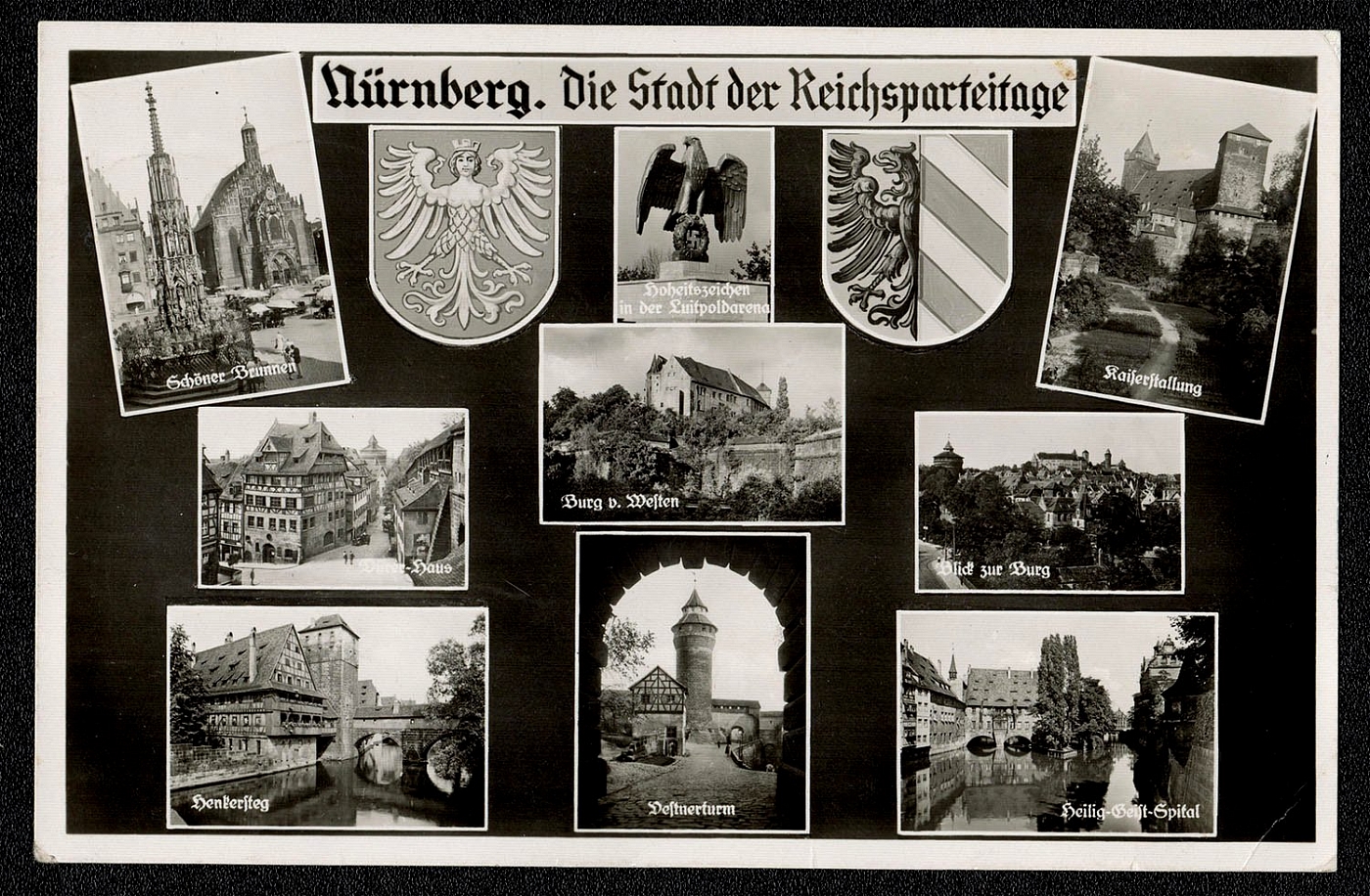
1936 Nuremberg the city of the Nazi Party Rallies
1936 Nuremberg the city of the Nazi Party Rallies Published by Verlag von Ludwig Riffelmacher Fiirth i. Bay., Falklandstr. 107 View card posted in Lauf (Pegnitz) on 30 August 1937. Franked with Scott 419.
Sold for:
$30
30
$20
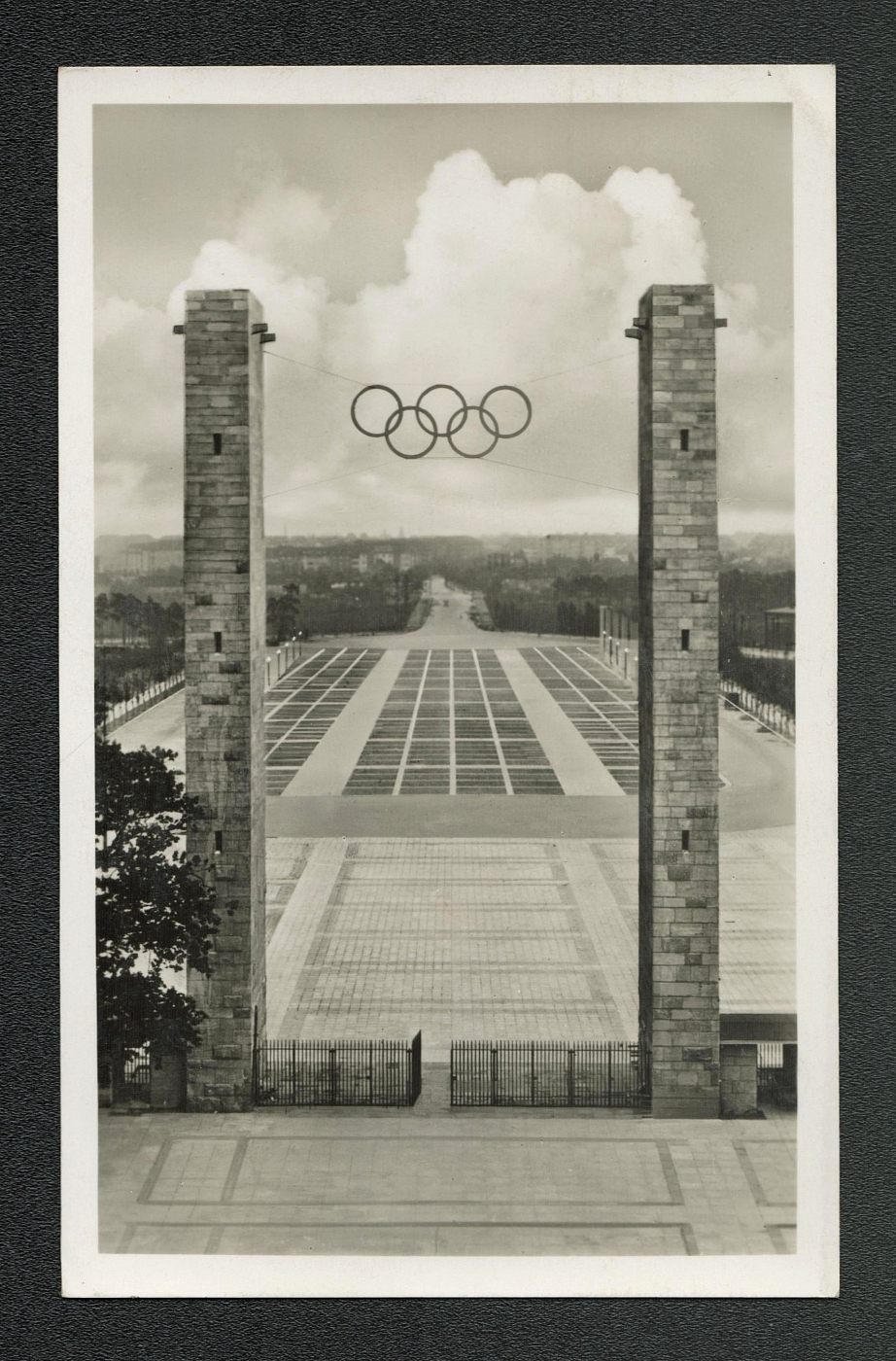
1936 The Reichs Sports Field View through the East Gate, Olympic Games
1936 The Reichs Sports Field View through the East Gate
Sold for:
$20
31
$18
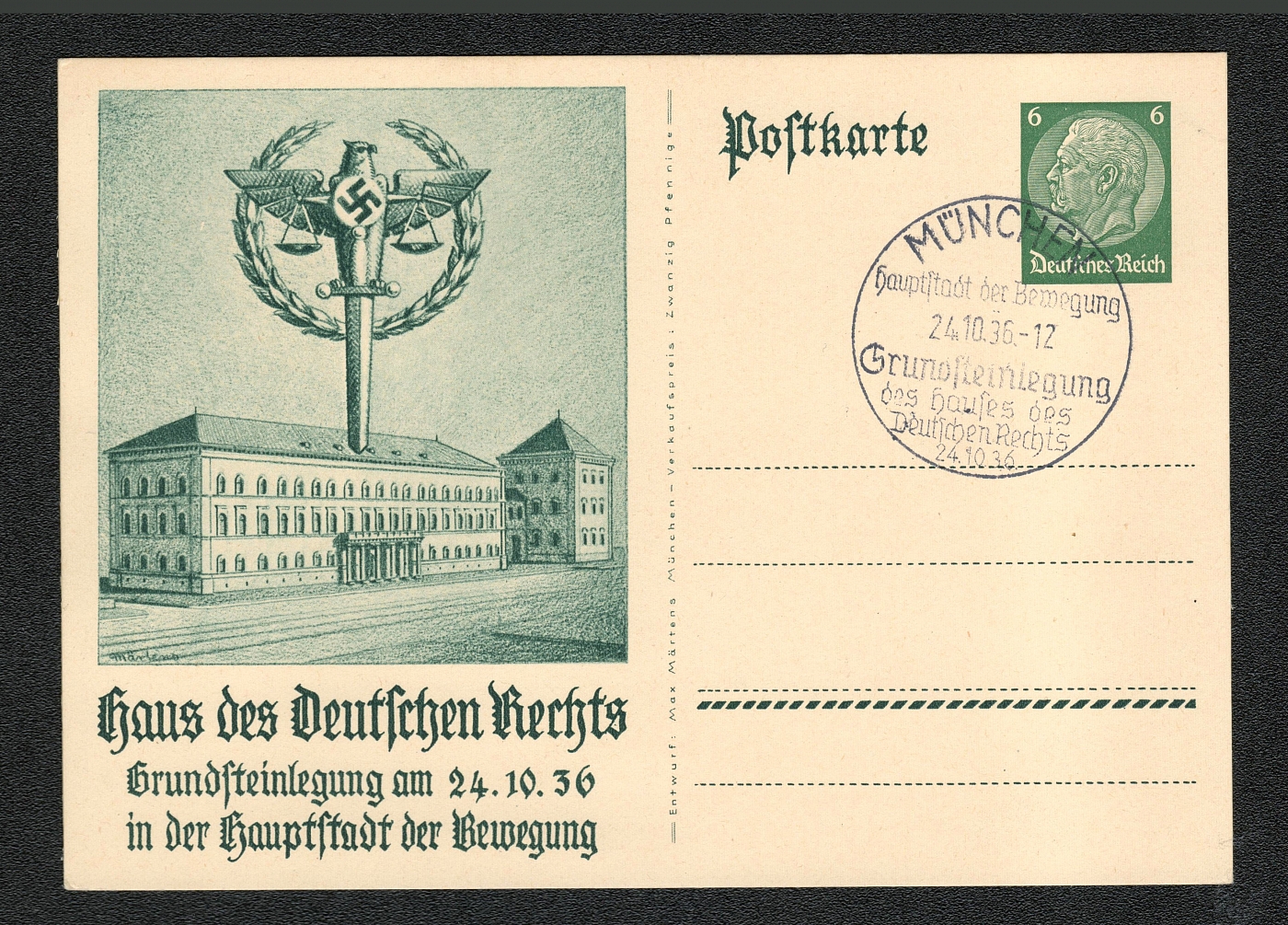
1936 House of German Law Special postmark Munich
1936 House of German Law Special postmark Munich
Sold for:
$18
32
-
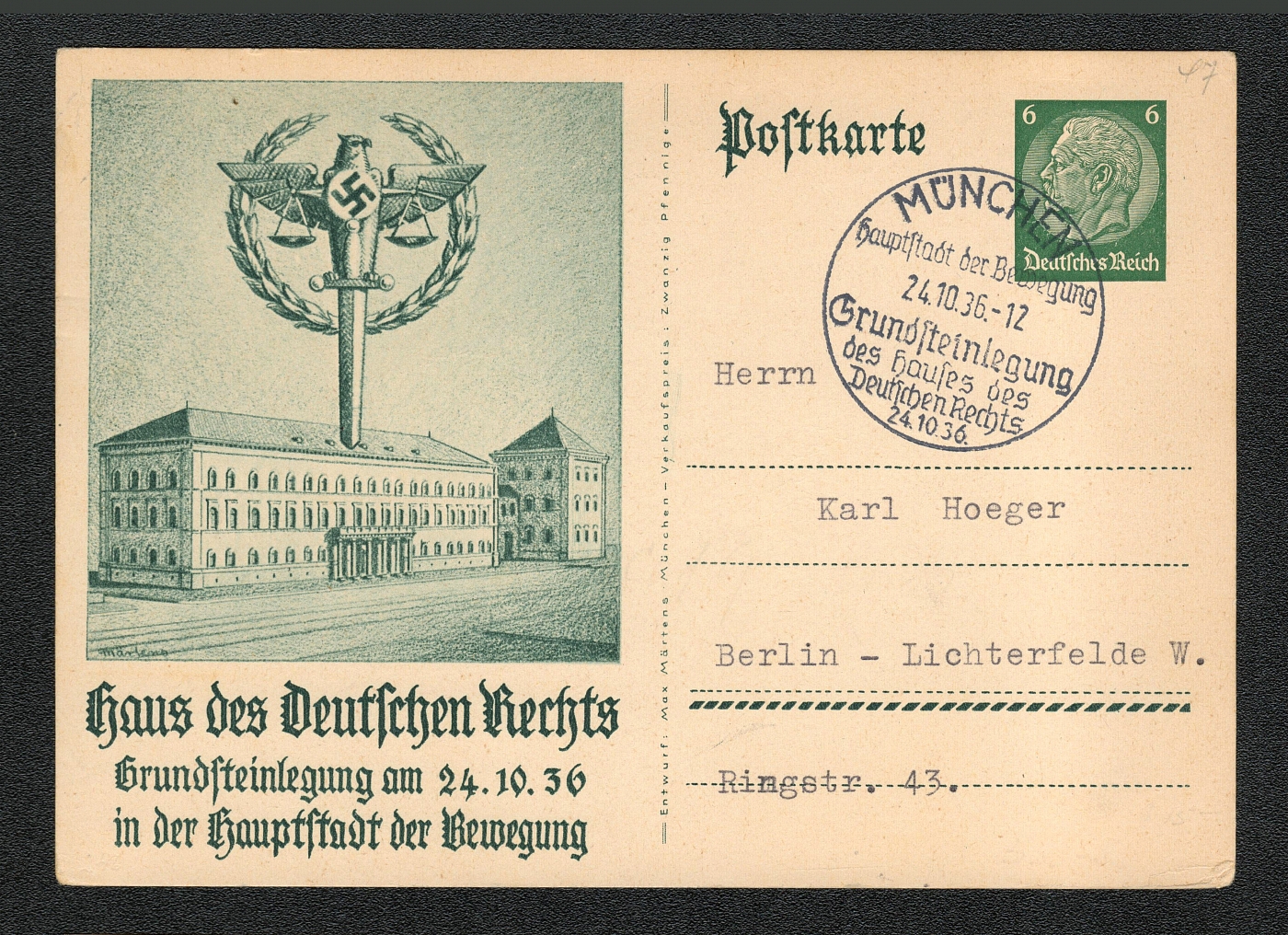
1936 House of German Law Special postmark Munich sent to Berlin
1936 House of German Law Special postmark Munich sent to Berlin
Unsold
33
-
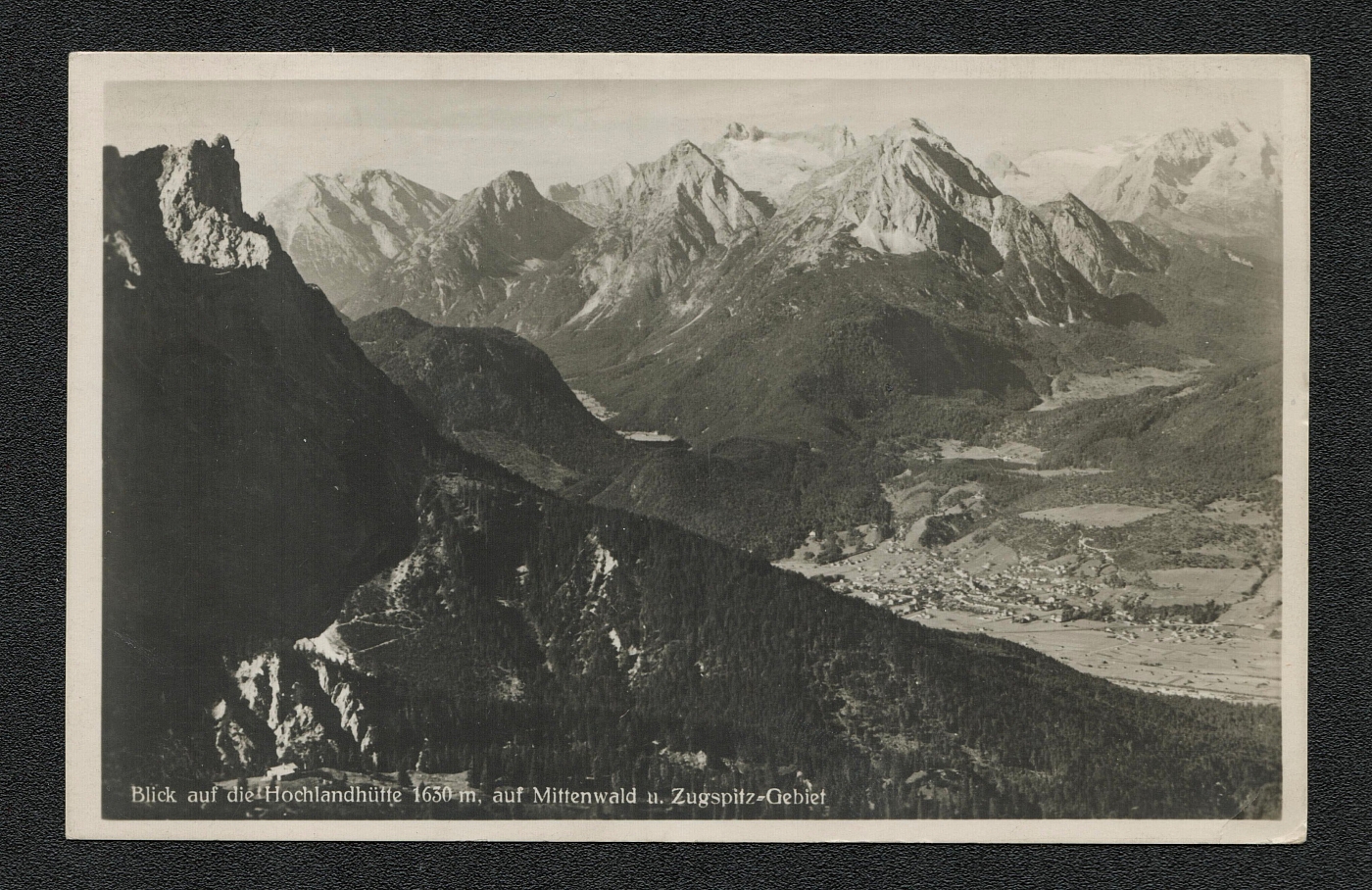
1936 View from mount of Mittenwald Photo Postcard
1936 View from mount of Mittenwald Photo Postcard
Unsold
34
-
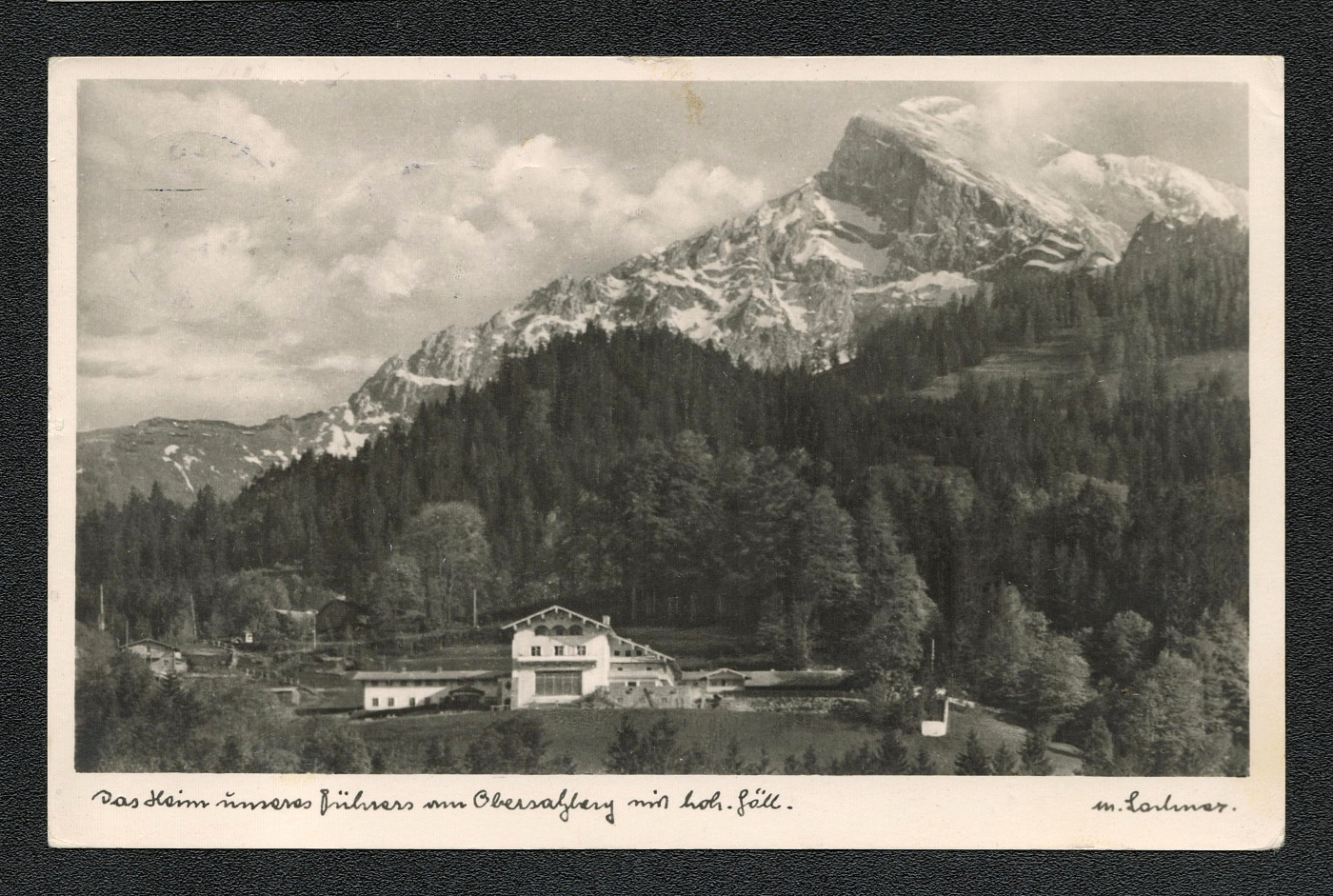
1936 Mountain View Photo Postcard with Special postmark (Jeder Volksgenosse Rundfunkhörer)
1936 Mountain View Photo Postcard with Special postmark (Jeder Volksgenosse Rundfunkhörer)
Unsold
35
$10
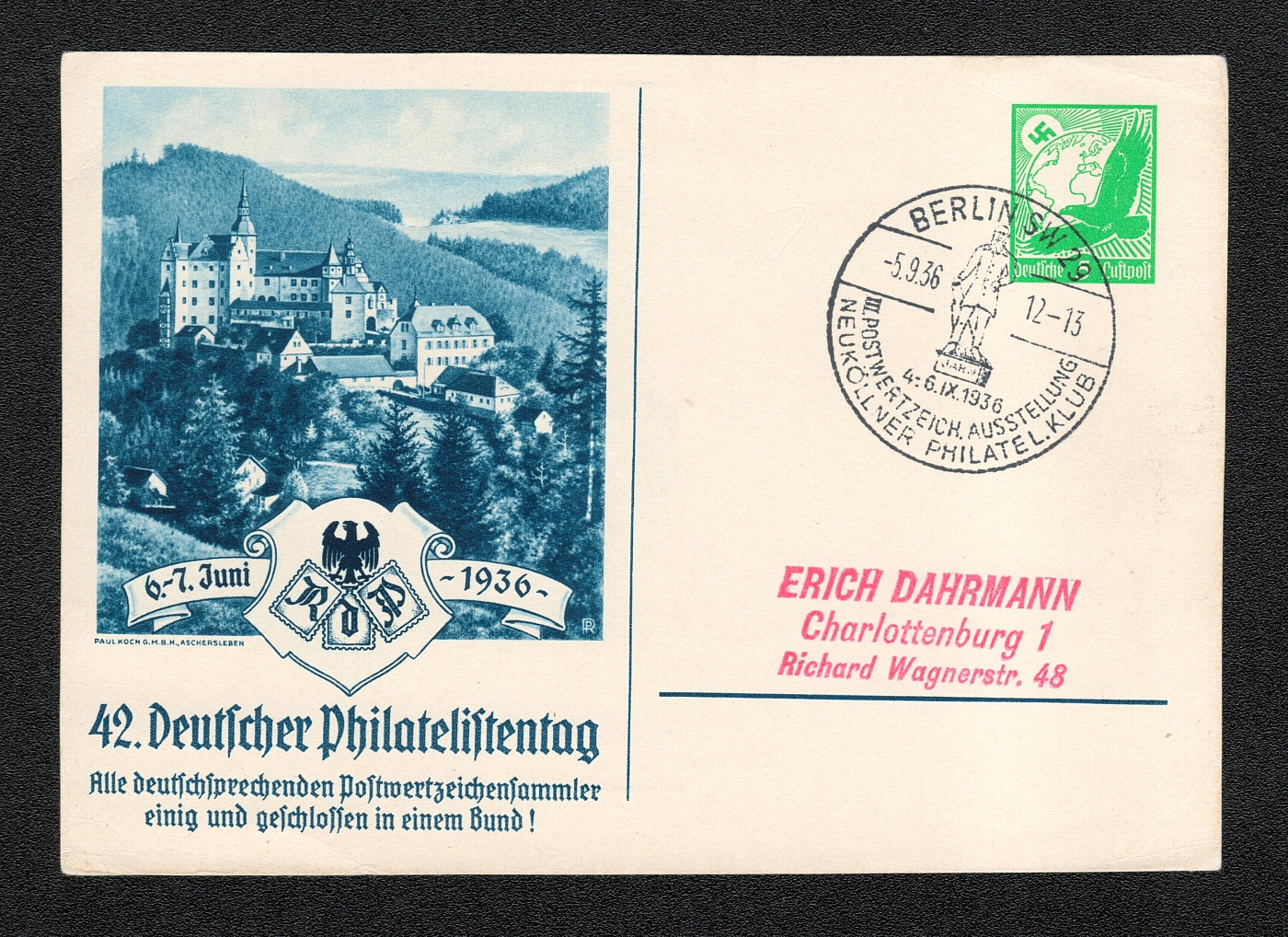
1936 German Philatelist Day with Special postmark Berlin
1936 German Philatelist Day with Special postmark Berlin
Sold for:
$10
36
-
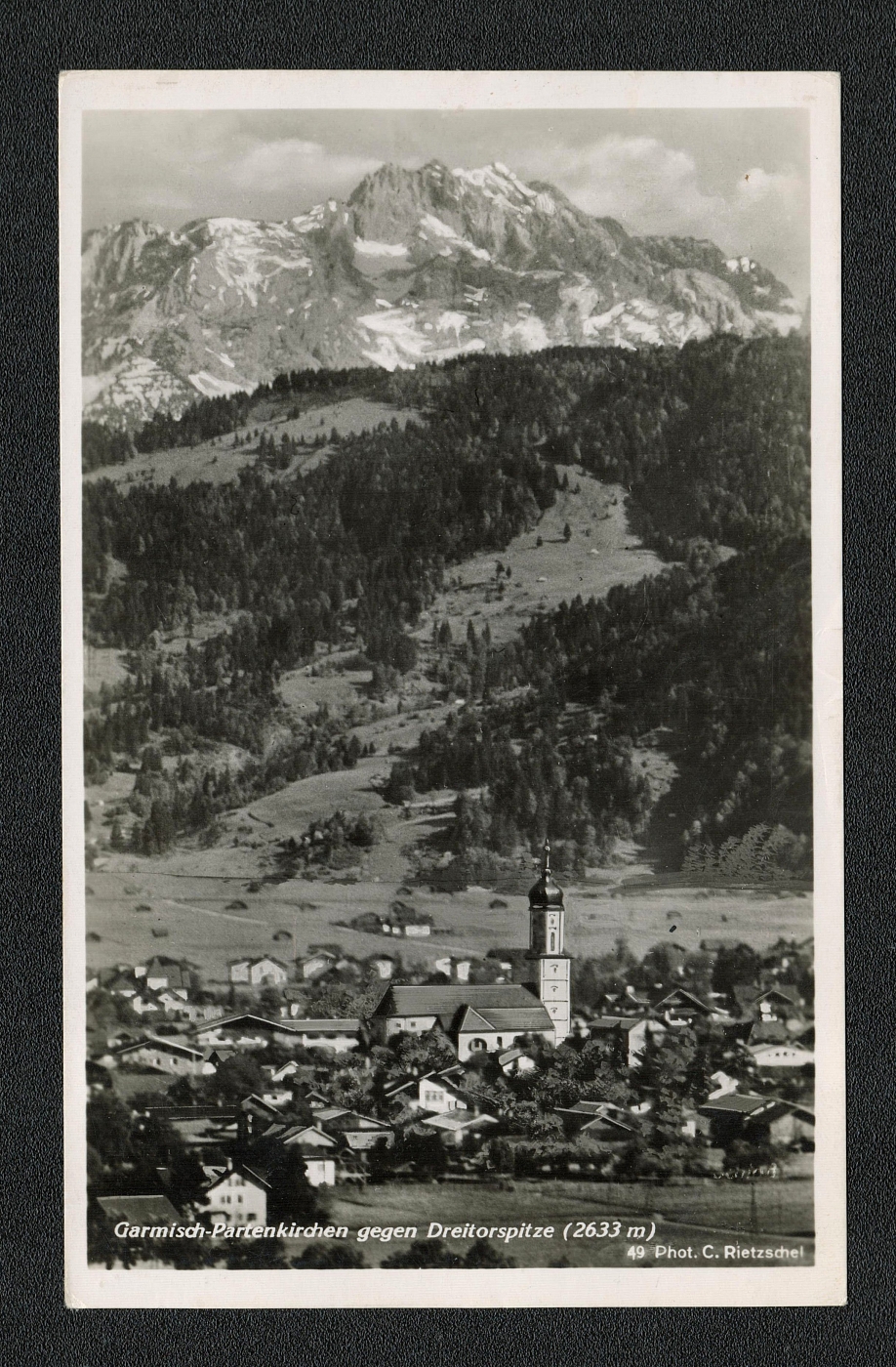
1936 Garmisch-Partenkirchen on the background of the mountain Dreitorspitze
1936 Garmisch-Partenkirchen on the background of the mountain Dreitorspitze
Unsold
37
-
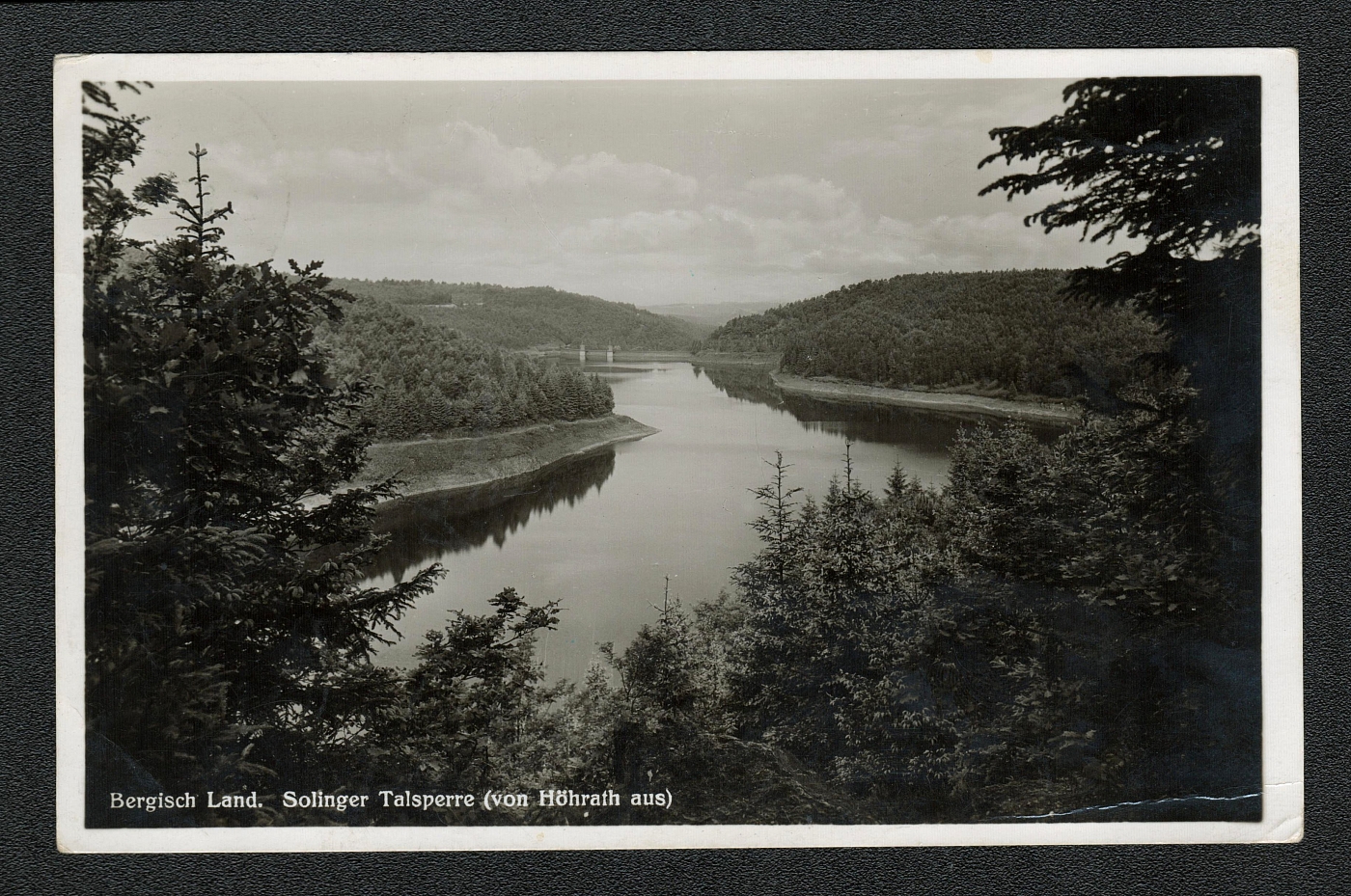
1936 Bergisch Land Solingen dam Photo postcard
1936 Bergisch Land. Solingen dam Photo postcard
Unsold
38
$10
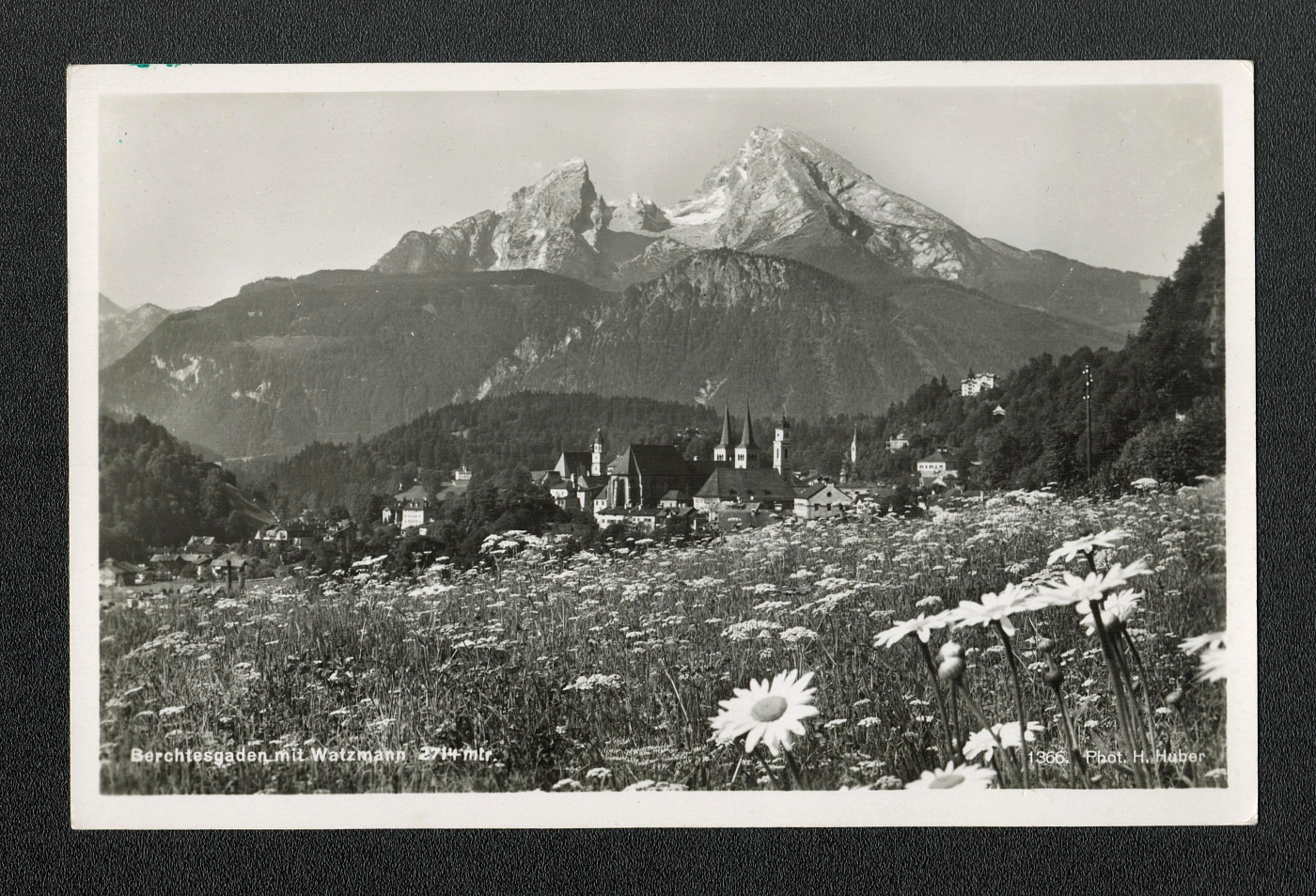
1936 Berchtesgaden in the background mountain Watzmann Photo postcard
1936 Berchtesgaden in the background mountain Watzmann Photo postcard
Sold for:
$10
39
-
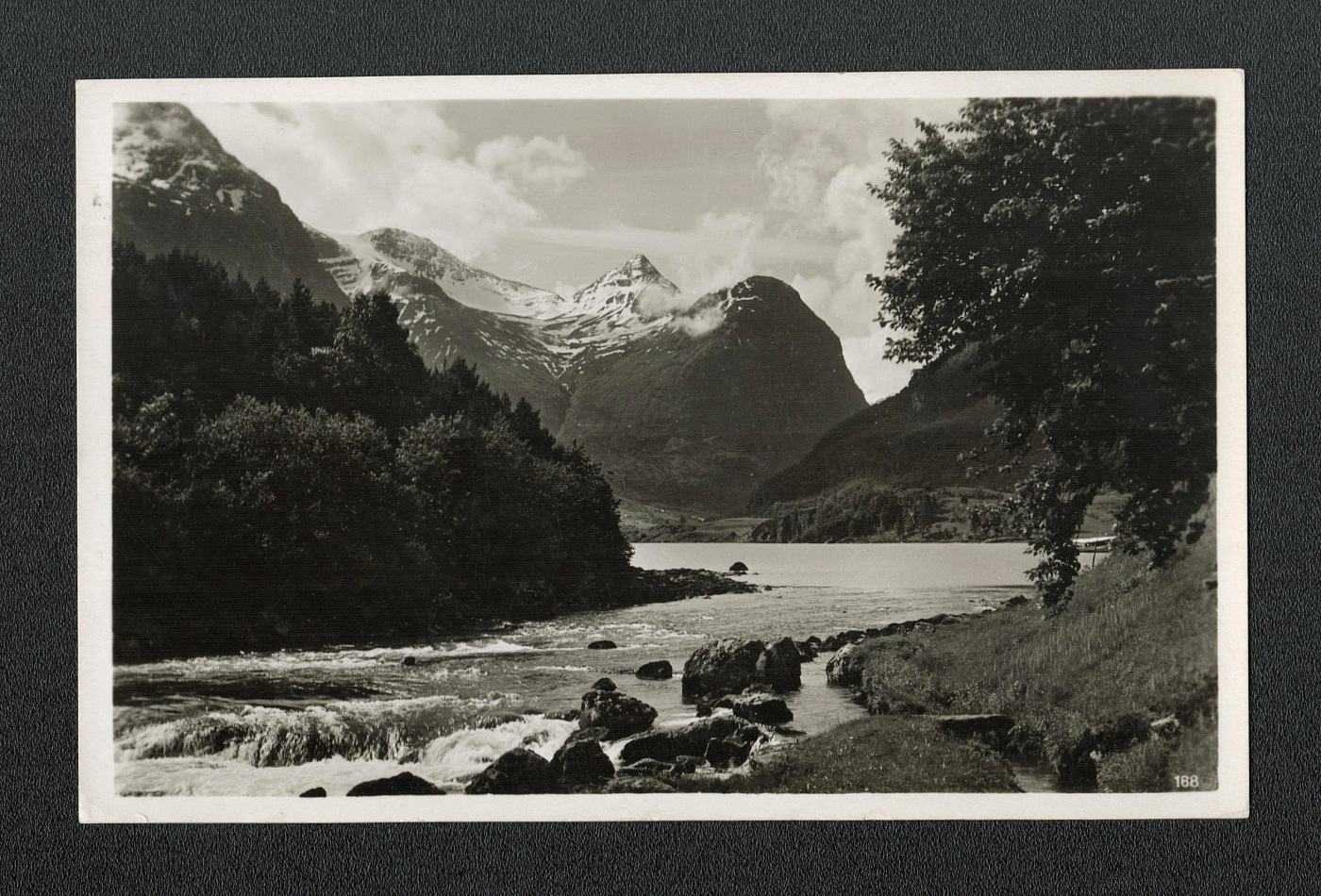
1936 Norway is a Fairyland postcard wit Advertising postmark Telephone Saves Time and Money
1936 Norway is a Fairyland postcard wit Advertising postmark Telephone Saves Time and Money
Unsold
40
$10
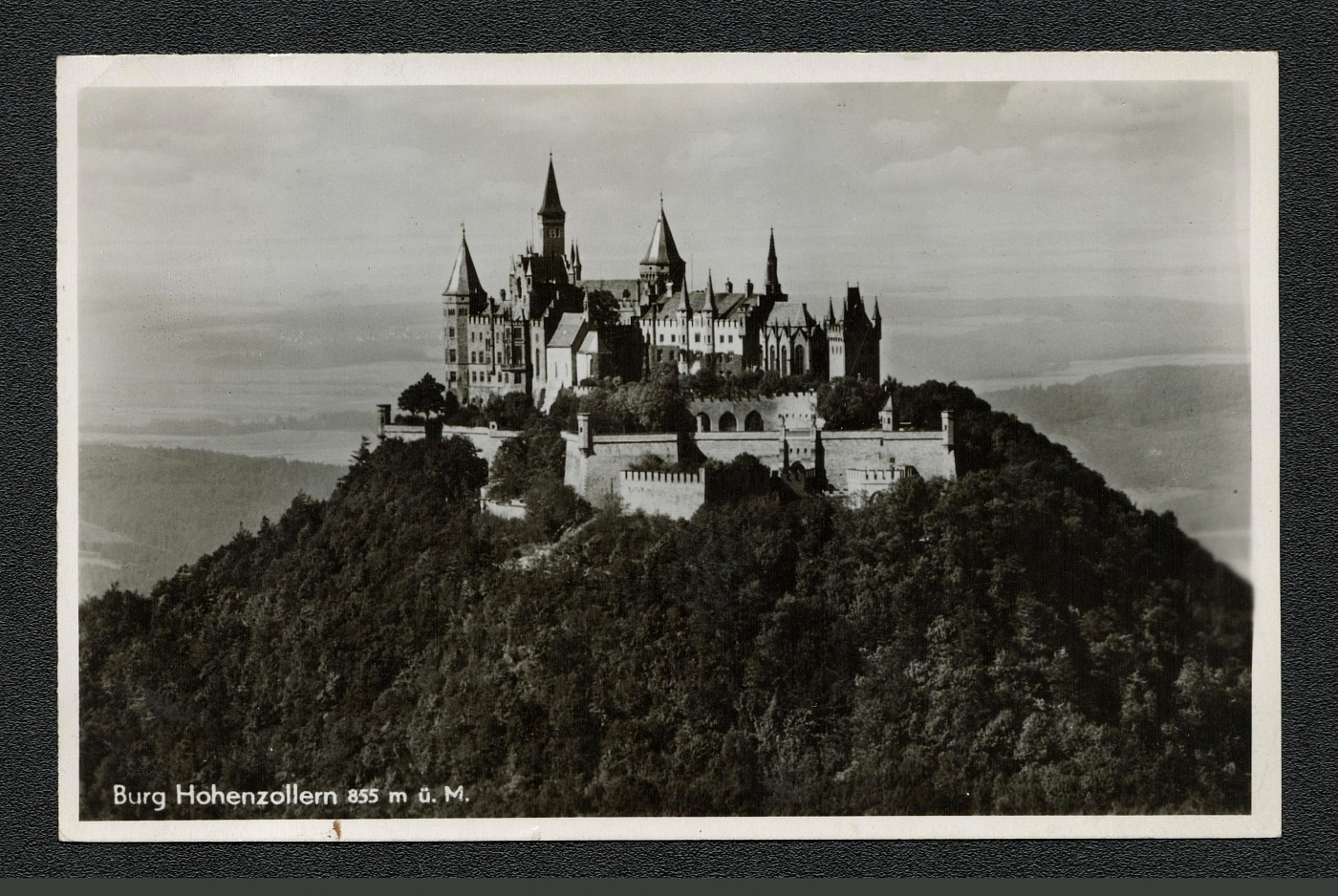
1936 Hohenzoller Castle Photo postcard with Special postmark
1936 Hohenzoller Castle Photo postcard with Special postmark
Sold for:
$10
41
-
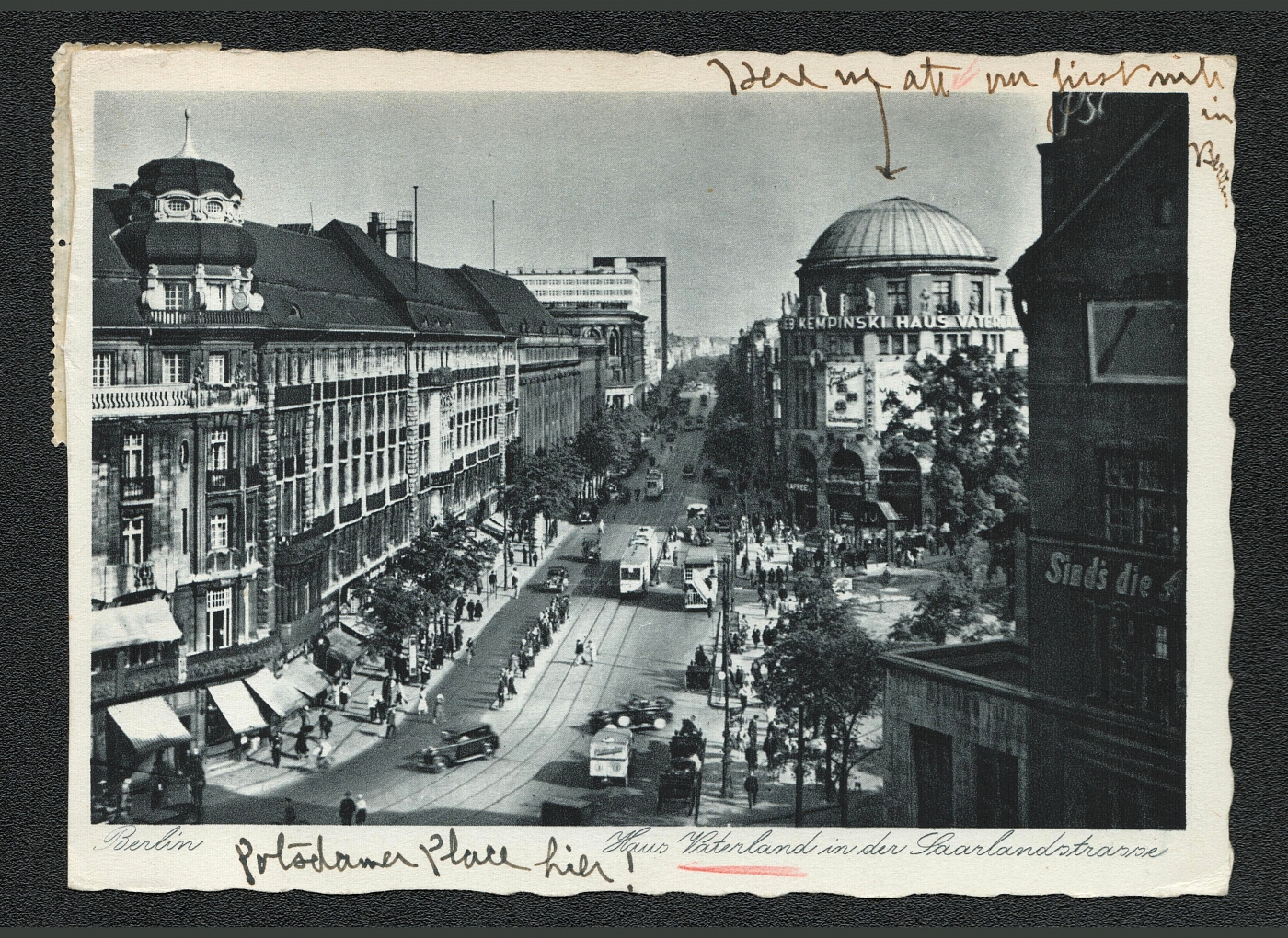
1936 Berlin House of Fatherland in Saarlandstrasse Photo postcard
1936 Berlin House of Fatherland in Saarlandstrasse Photo postcard
Unsold
42
-
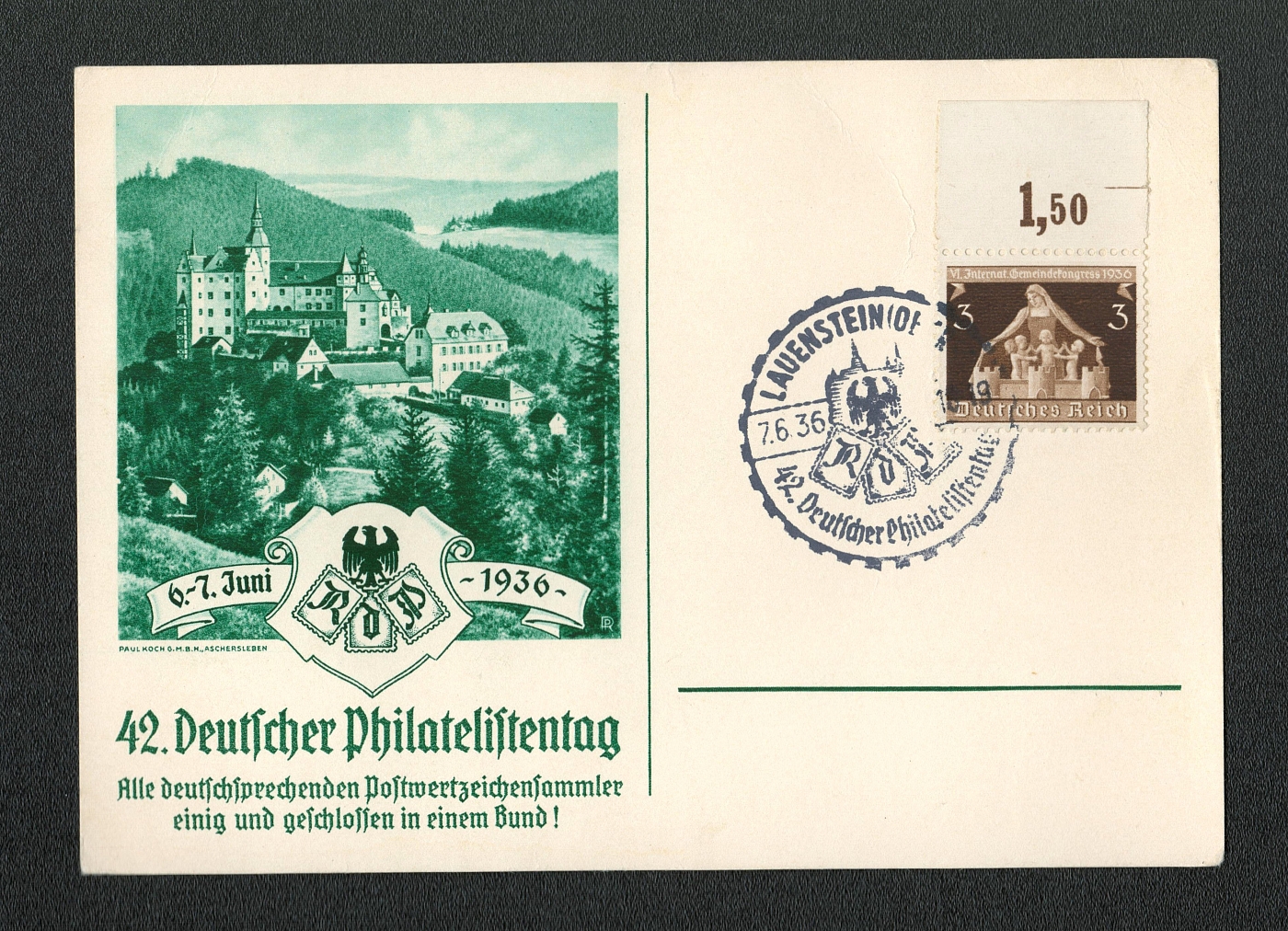
1936 German Philatelist Day with Special postmark Lauenstein
1936 German Philatelist Day with Special postmark Lauenstein
Unsold
43
-
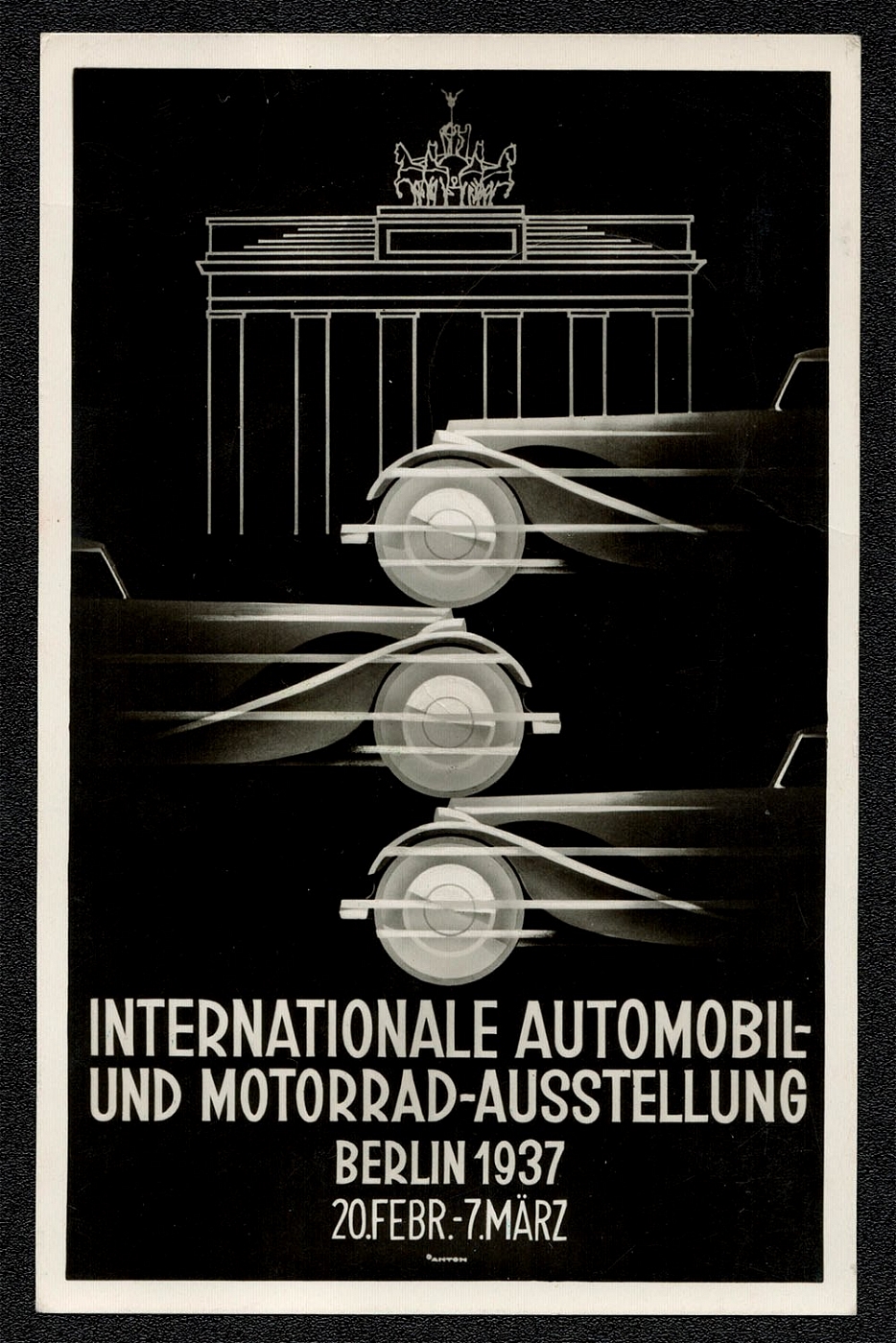
1937 International Automobile and Motorcycle Exhibition, Berlin
International Automobile and Motorcycle Exhibition, Berlin 1937 An advertising post card sold at the International Motor Exhibition held in the Radio Tower in Berlin-Charlottenburg from 20 February to 7 March 1937. A pre-printed advertising post card sold at the International Motor Exhibition franked with Sc 416. The special cancel was used from 9 February to 8 March 1937.
Unsold
44
$30
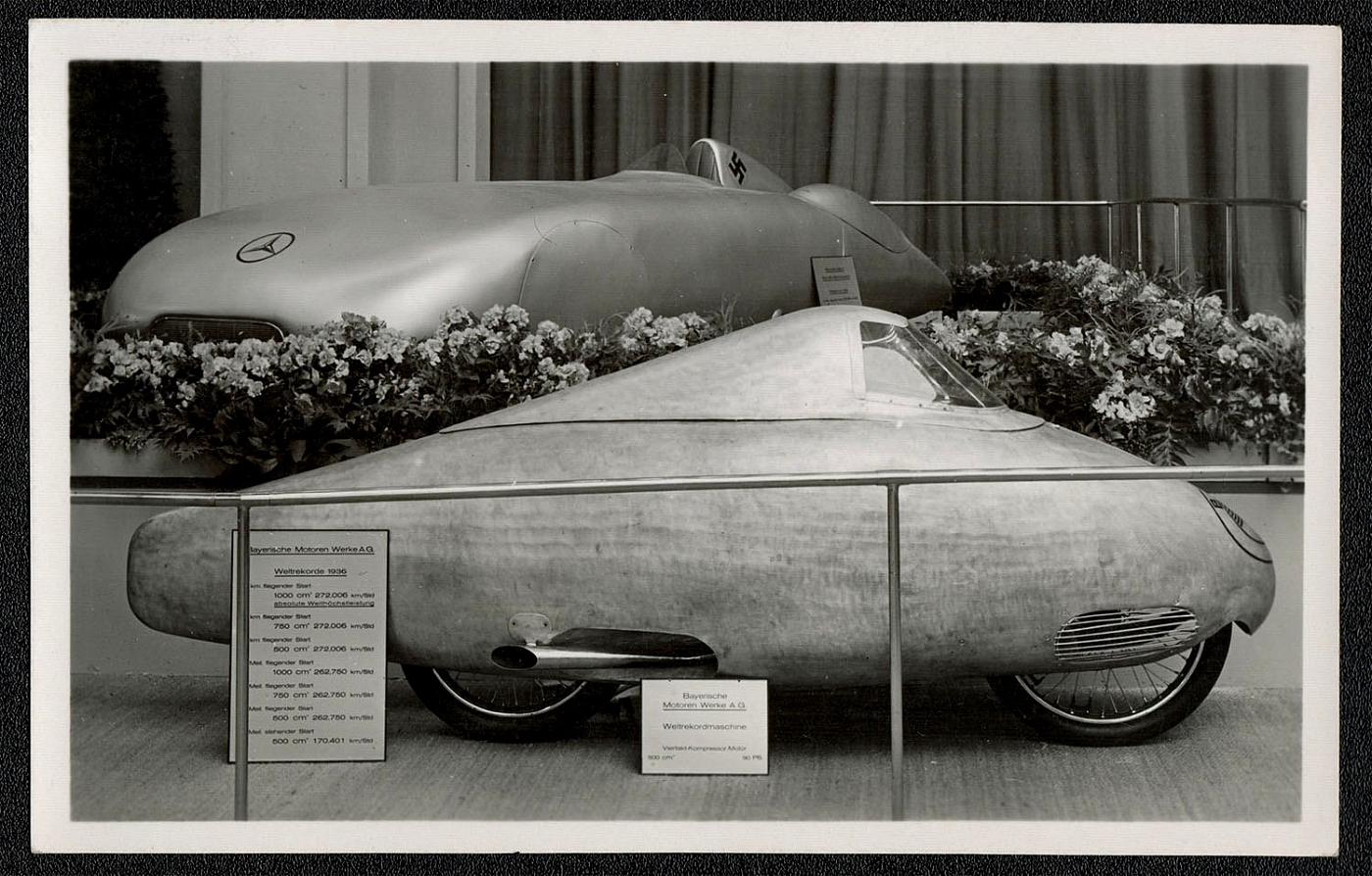
1937 International Automobile and Motorcycle Exhibition, Mercedes, Berlin
Bayerische Motoren Werke A.G. Weltrekorde 1936 1 km fliegender Start 1000 cm3 272,006 km/Std absolute Weithochstieistung Bavarian Motor Works, Inc. 1936 World Record Absolute High Performance 1 Kilometer Flying Start 1000 cubic centimeters - 272.006 km per hour Weltrekordmaschine Viertakt-Kompressor-Motor 500 cm3 90 Pferdestarke World Record Machine Supercharged four-stroke 500 cc motor— 90 Horsepower In American terms, BMW’s fully streamlined racing motorcycle set its 1936 world’s record of 169.019 mph with a 61 cubic inch supercharged engine. Photocard franked with Sc 419 and posted at Berlin-Charlottenburg on 5 March 1937. The picture on the obverse is of the International Automobile and Motorcycle Exhibition’s Hall of Honor with a BMW racing motorcycle in the foreground, and a Mercedes racing car in the background. The card was published by R.D.A. Archiv (Wigo), Berlin-Charlottenburg 2, Hardenbergdtr. 8. The Exhibition was held in the Radio Tower in Berlin-Charlottenburg from 20 February to 7 March 1937. Hitler personally opened these exhibitions whenever possible. The special cancel was used from 19 February to 8 March 1937.
Sold for:
$30
45
-
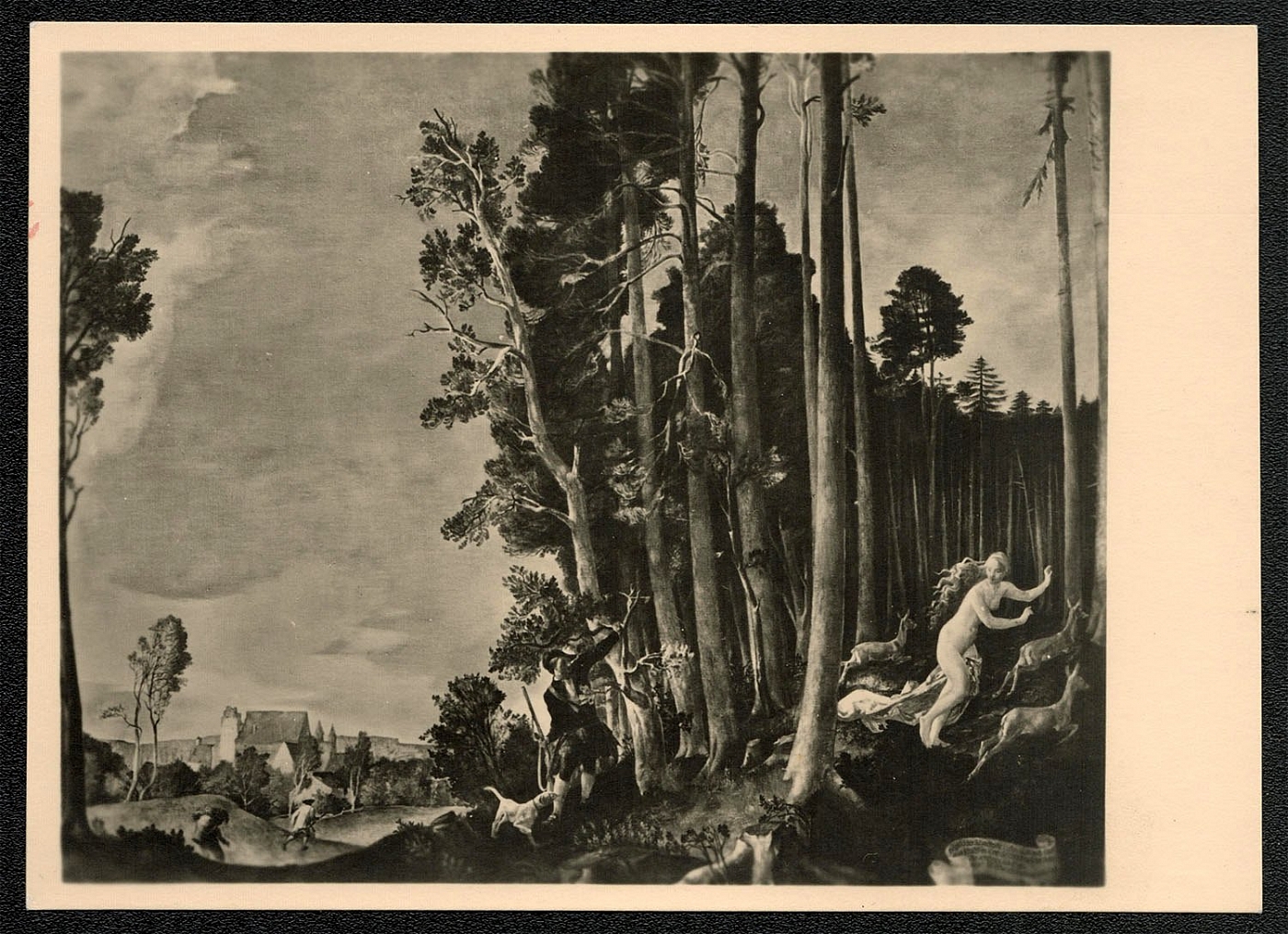
1937 Munich House of German Art, Franz Weiss Romance
Munchen. Haus der Deutschen Kunst Franz Weiss ,,Romanze“ Photo-Hoffmann, Miinchen, Friedrichstr. 34 On 18 July 1937 Adolf Hitler delivered a speech at the opening of the Haus der Deutschen Kunst in Munchen: “In the collapse of Germany after the war, the economic decline had been generally felt, the political decline had been denied by many, and the cultural decline had not even been observed by the majority of the people. It was an age of phrases and catchwords: Art was said to be ‘an international experience.’ It was said that there was no such thing as the art of a people or, better, of a race: there was only the art of a certain period. So today there is not a German or a French art, but a ‘modern art.’ This is to reduce art to the level of fashions in dress, with the motto ‘Every year something fresh.’ And just as in fashions one must wear ‘modern’ clothes whether they are beautiful or not, so the great masters of the past were decried. But true art is and remains eternal.
Unsold
46
-
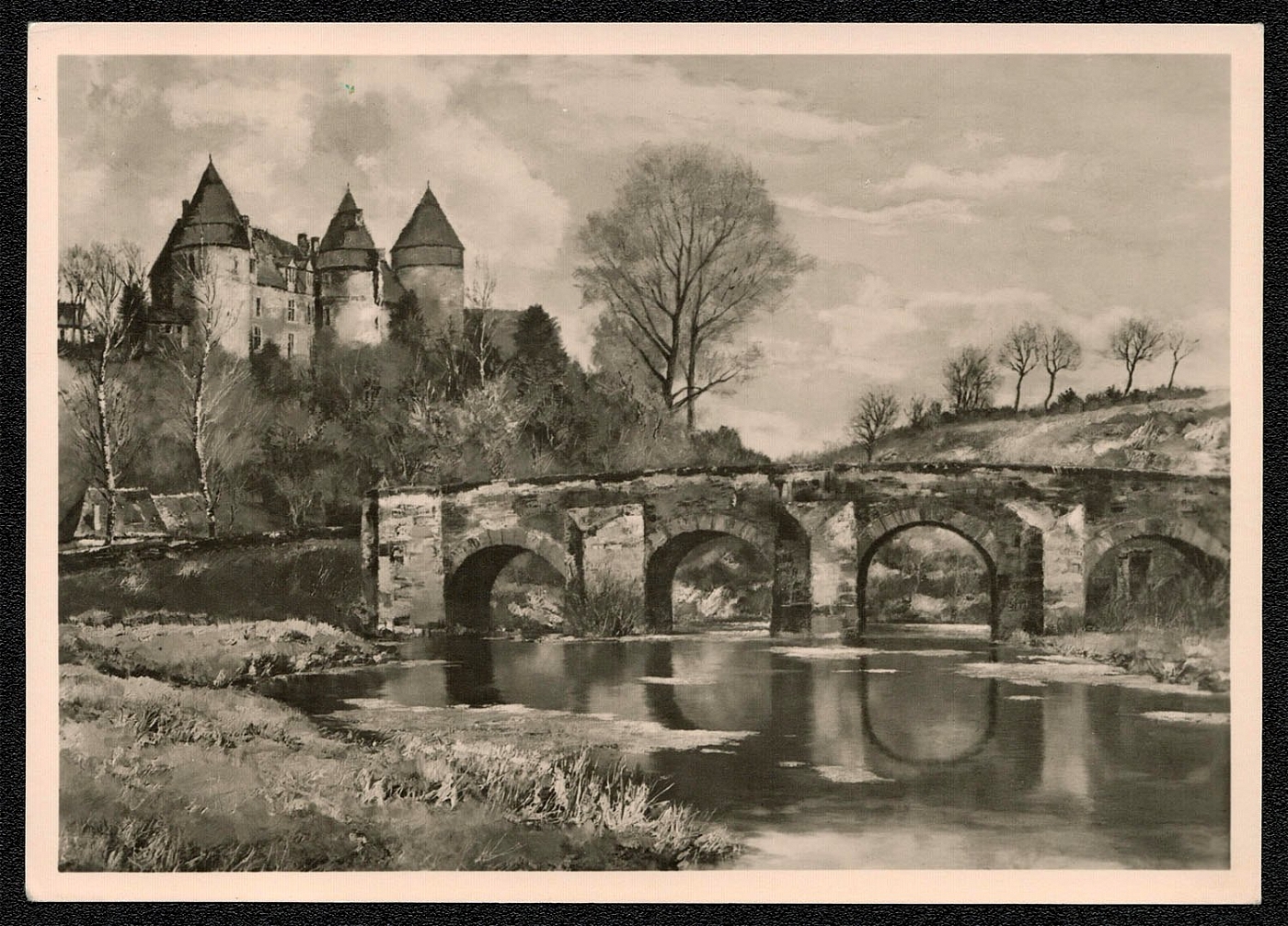
"1937 Munich House of German Art Josef Burger ""The Old Bridge"""
Munchen. Haus der Deutschen Kunst Josef Burger „Die alte Brucke“ Photo-Hoffmann, Munchen, Friedrichstr. 34 “For this ‘modern art’ National Socialism desires to substitute a German art and an eternal art. This Haus der Deutschen Kunst is designed for the art of the German people—not for an international art. Art as the expression of the essential character of the abiding people must be an eternal monument, itself abiding and permanent. Therefore in speaking of German art I shall see the standard for that art in the German people, in its character and life, in its feeling, its emotions, and its development.”
Unsold
47
-
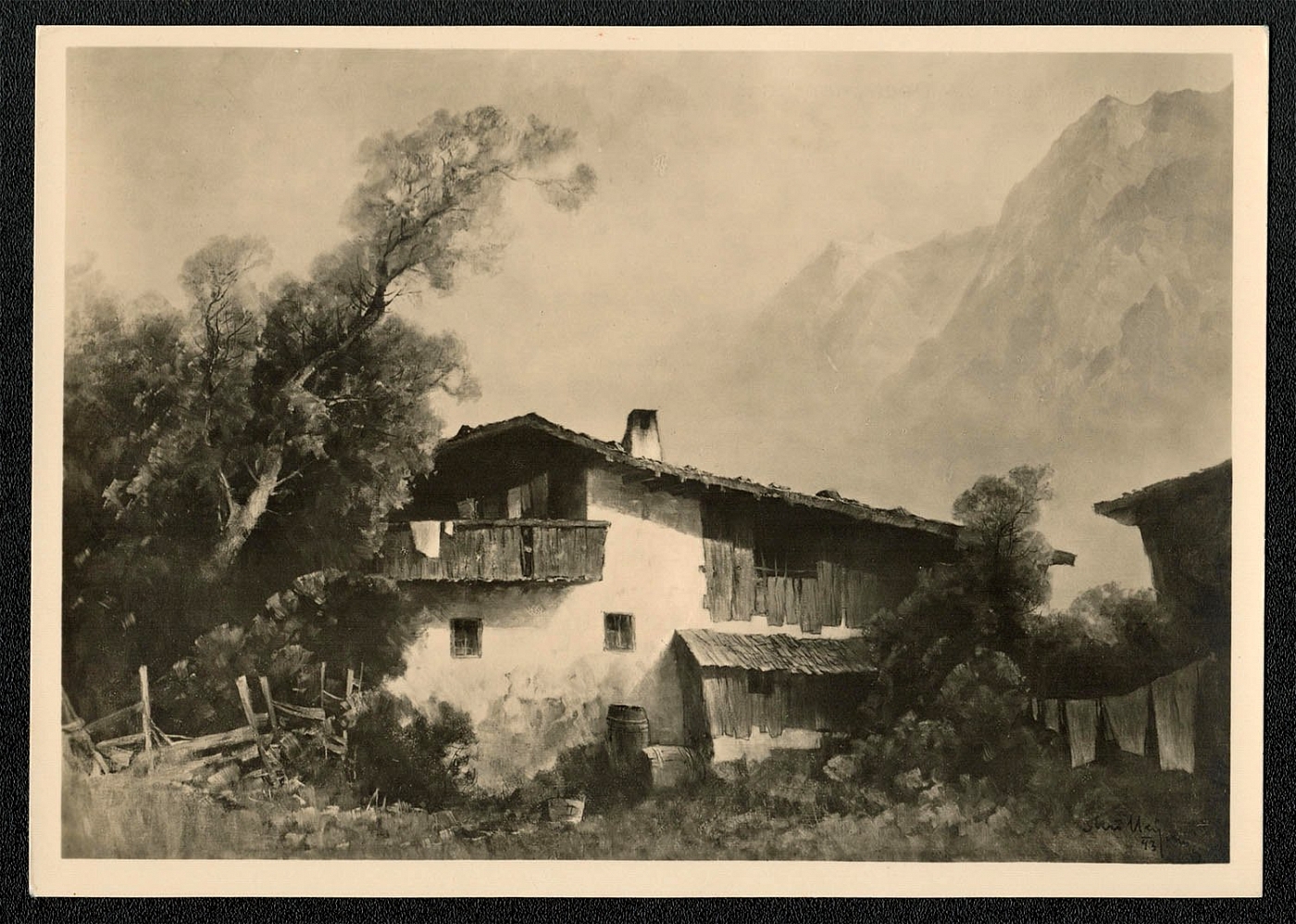
"1937 Munich House of German Art Oskar Mulley ""In the Bottom of the Valley"""
"1937 Munich. House of German Art Oskar Mulley ""In the Bottom of the Valley"" “Many attempts have been made through the centuries to define what to be German really means. I would not seek to give an explanation in the first instance. I would rather state a law—a law previously expressed by a great German: ‘To be a German is to be clear.’ That means that to be German is to be logical and true. It is the spirit which has always lived in our people, which has inspired sculptors, painters, architects, thinkers, poets, and above all, our musicians.”"
Unsold
48
-
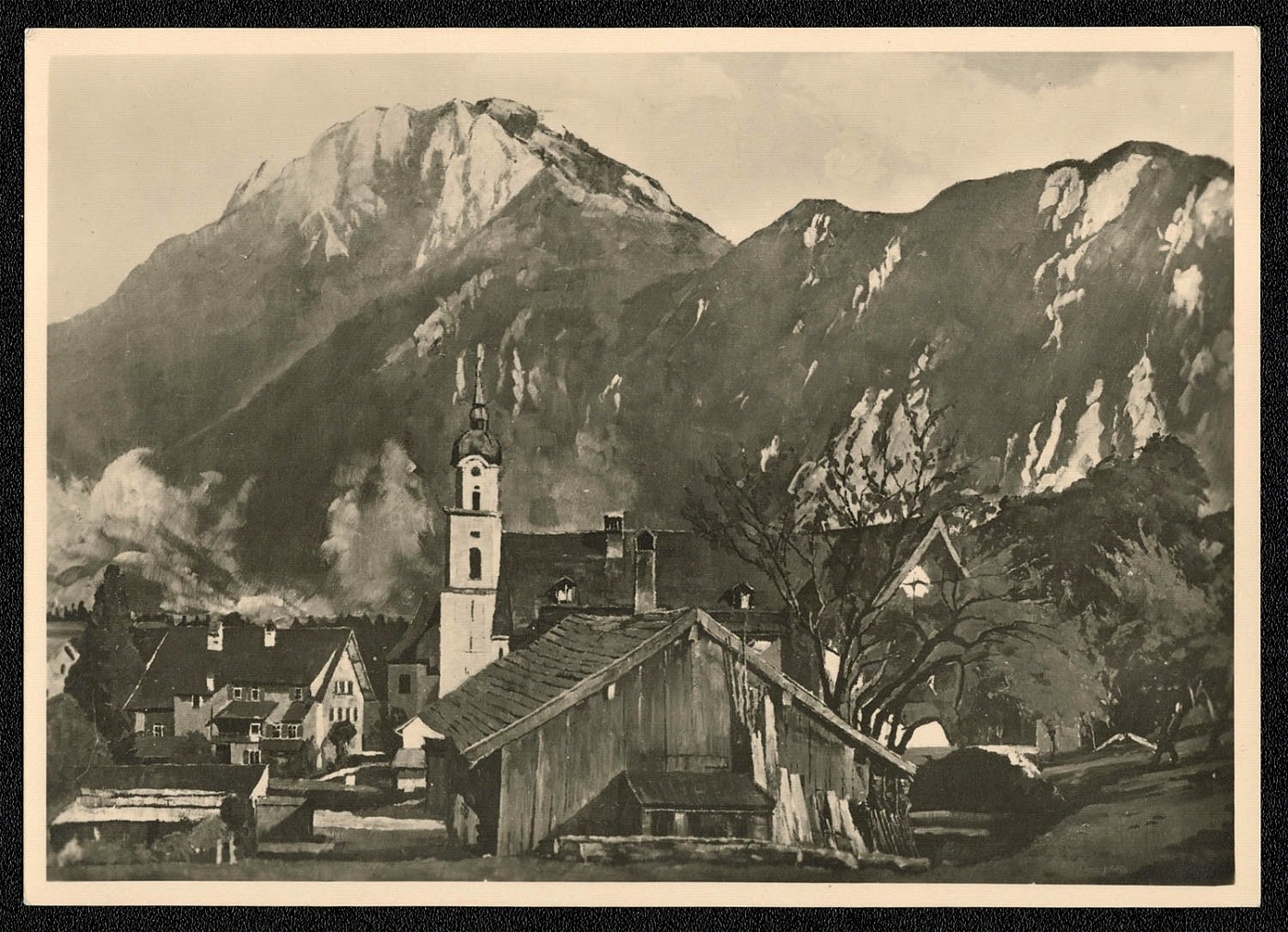
"1937 Munich House of German Art Anton Kiinnaier ""By the Massner-Wirt in Kiefersfelden"""
"1937 Munich House of German Art Anton Kiinnaier ""By the Massner-Wirt in Kiefersfelden"" “During the long years in which I planned the formation of a new Reich I gave much thought to the tasks that would await us in the cultural cleansing of the people’s life. there was to be a cultural renascence as well as a political and economic reform. I was therefore always determined that if fate should one day give us power, I would discuss these matters with no one, but would form my own decisions, for it is not given to all to have an understanding for tasks as great as these.”"
Unsold
49
-
50
-
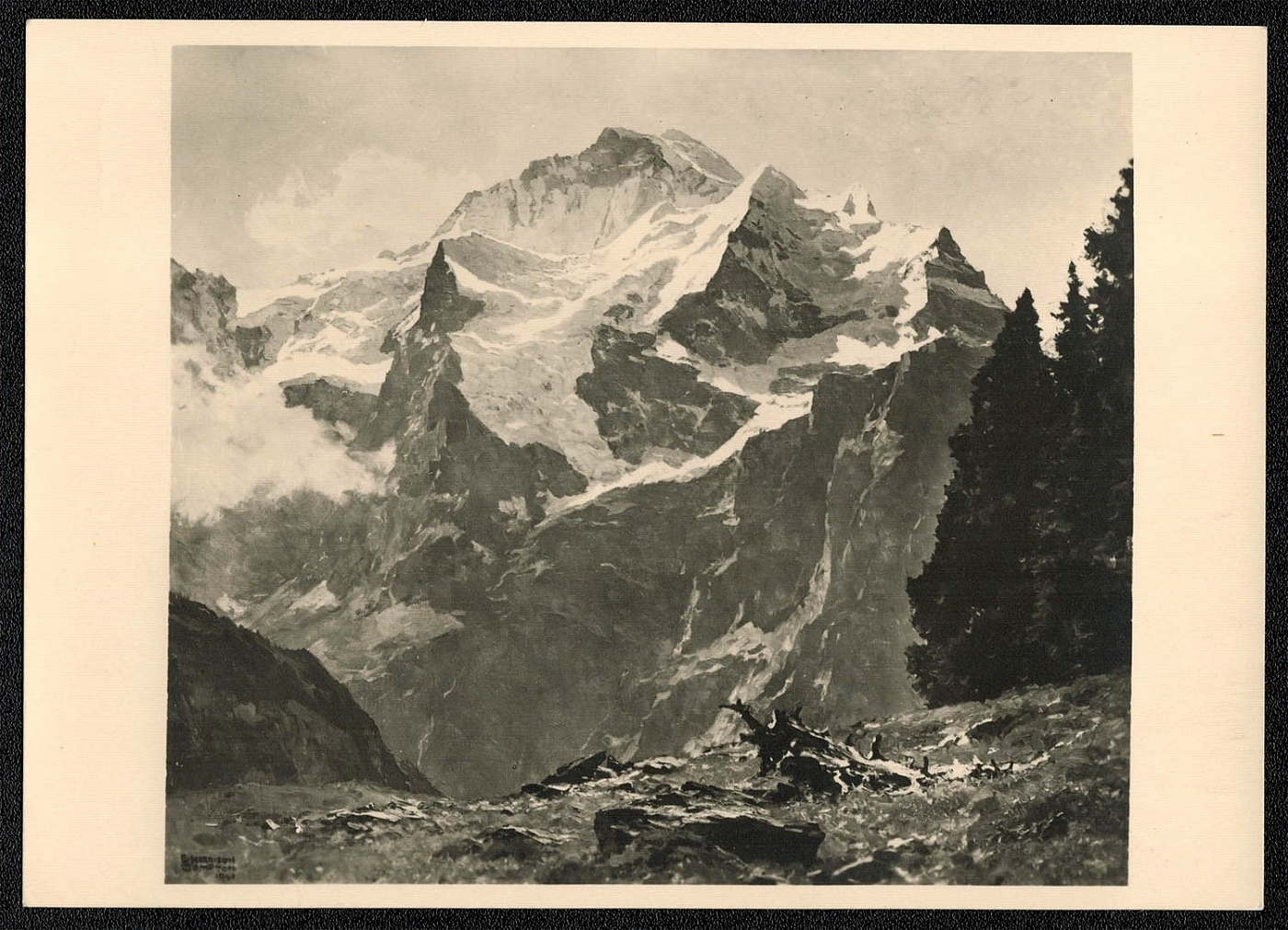
1937 Munich House of German Art Edward Harrisson Compton „Berner Oberland “
1937 Munich House of German Art Edward Harrisson Compton „Berner Oberland “ “As in politics, so in German art-life: we are determined to make a clean sweep of phrases. Ability is the necessary qualification if an artist wishes his work to be exhibited here. It is not the function of art to retreat backward from the stage of development which a people has already reached: its sole function must be to symbolize that development.”
Unsold
51
-
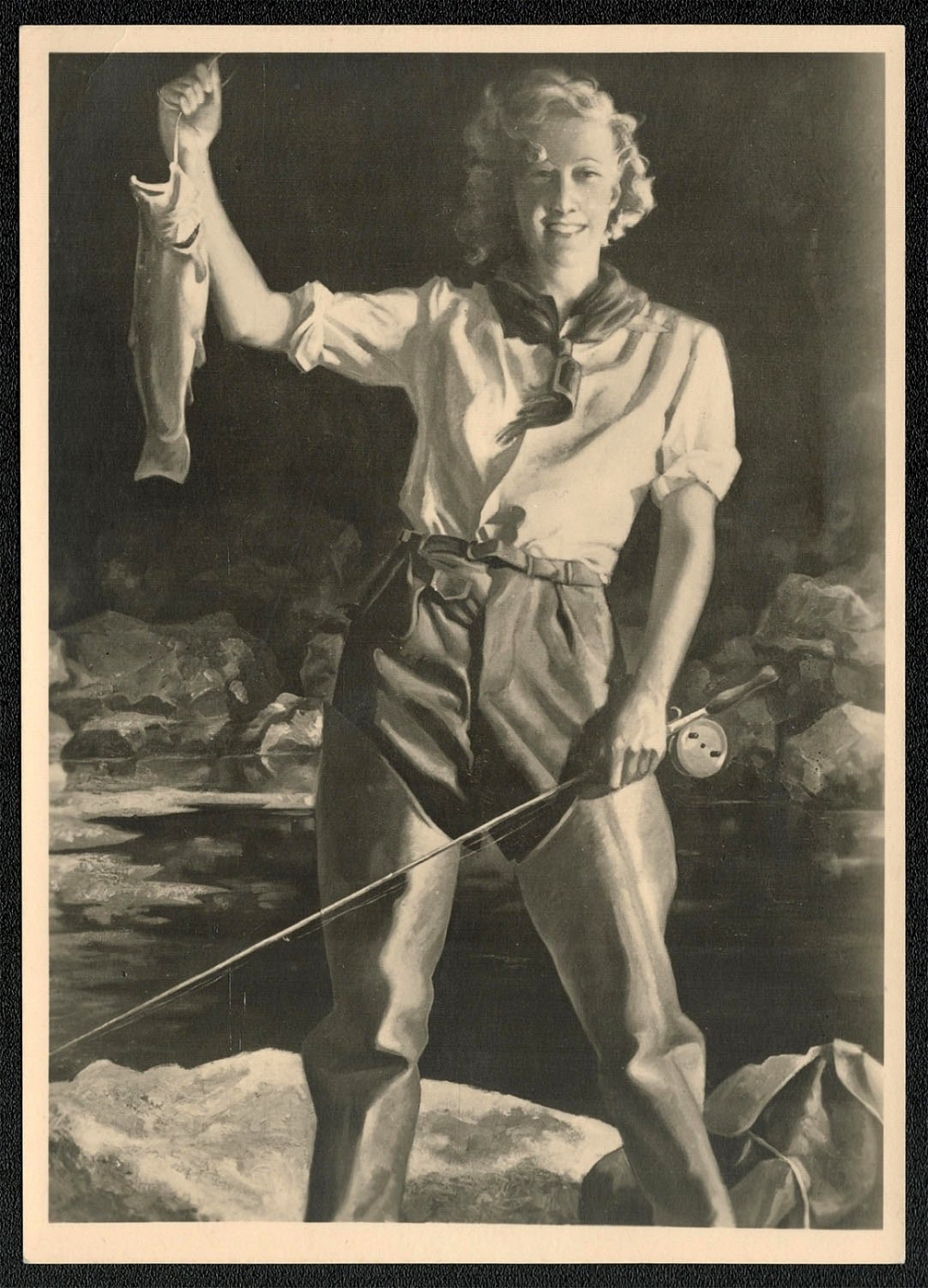
"1937 Munich House of German Art Jul. Engelhard “Sport Fishing"""
"1937 Munich House of German Art Jul. Engelhard “Sport Fishing"" “The new age of today is at work on a new human type. Men and women are to be more healthy, stronger: there is a new feeling of life, a new joy in life. Never was humanity in its external appearance and in its frame of mind nearer to the ancient world than it is today.”"
Unsold
52
-
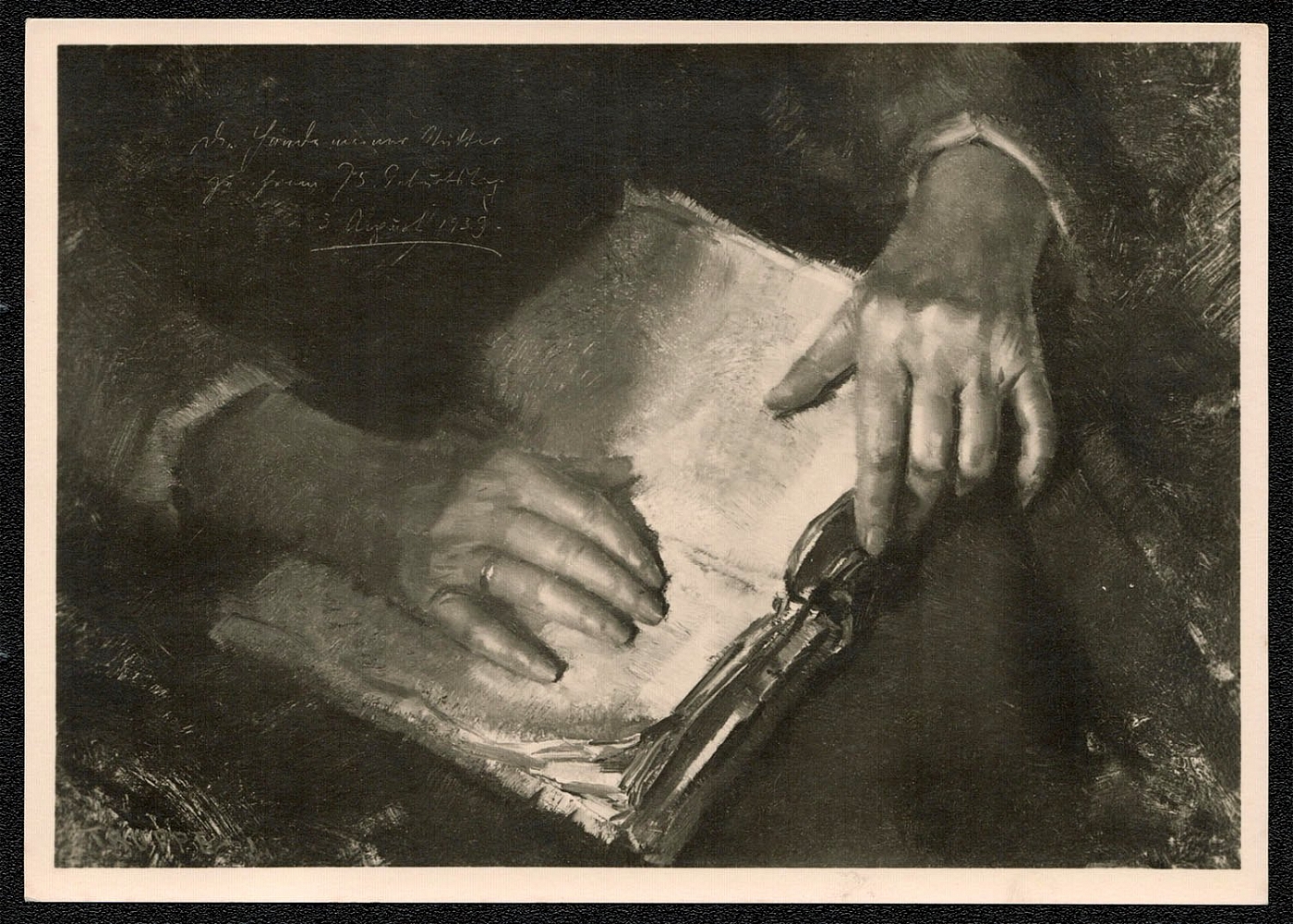
1937 Munich House of German Karl Truppe Engelhard “A Mother’s Hands”
1937 Munich House of German Karl Truppe Engelhard “A Mother’s Hands” “When we came to power in 1933 the erection of the Haus der Deutschen Kunst was left to the Third Reich. And the building is so unique, so individual, that it cannot be compared with anything else. It is a true monument for this city and more than that—for German art.”
Unsold
53
-
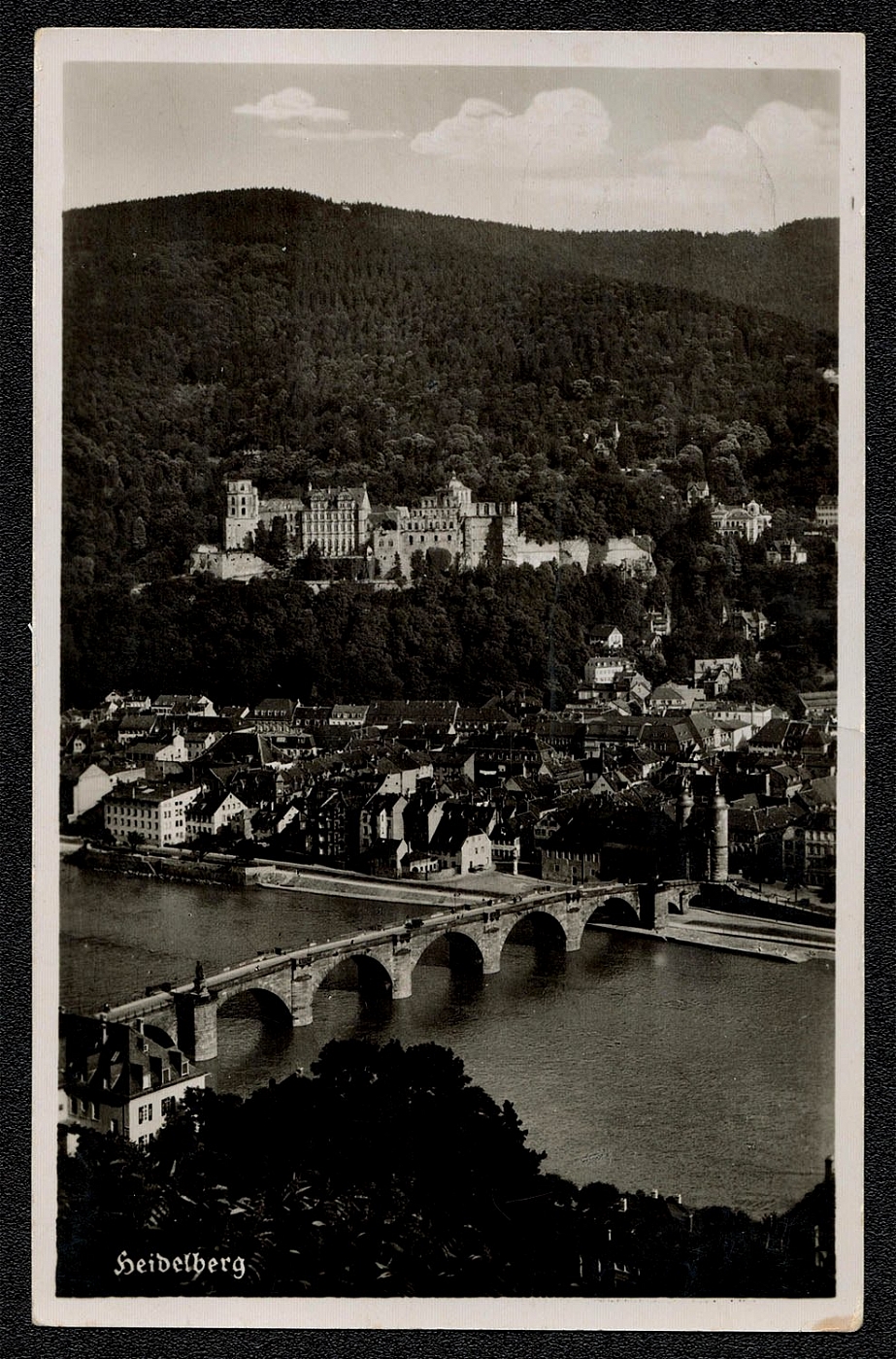
1937 Darmstadt, Heidelberg Str. Franked with Sc 419, posted in Nurnberg, 2 April
Photocard published by Kunstverlag Karl G. Peters Darmstadt, Heidelberg Str. 81 31/10. Franked with Sc 419, posted in Nurnberg, 2 April 1937.
Unsold
54
-
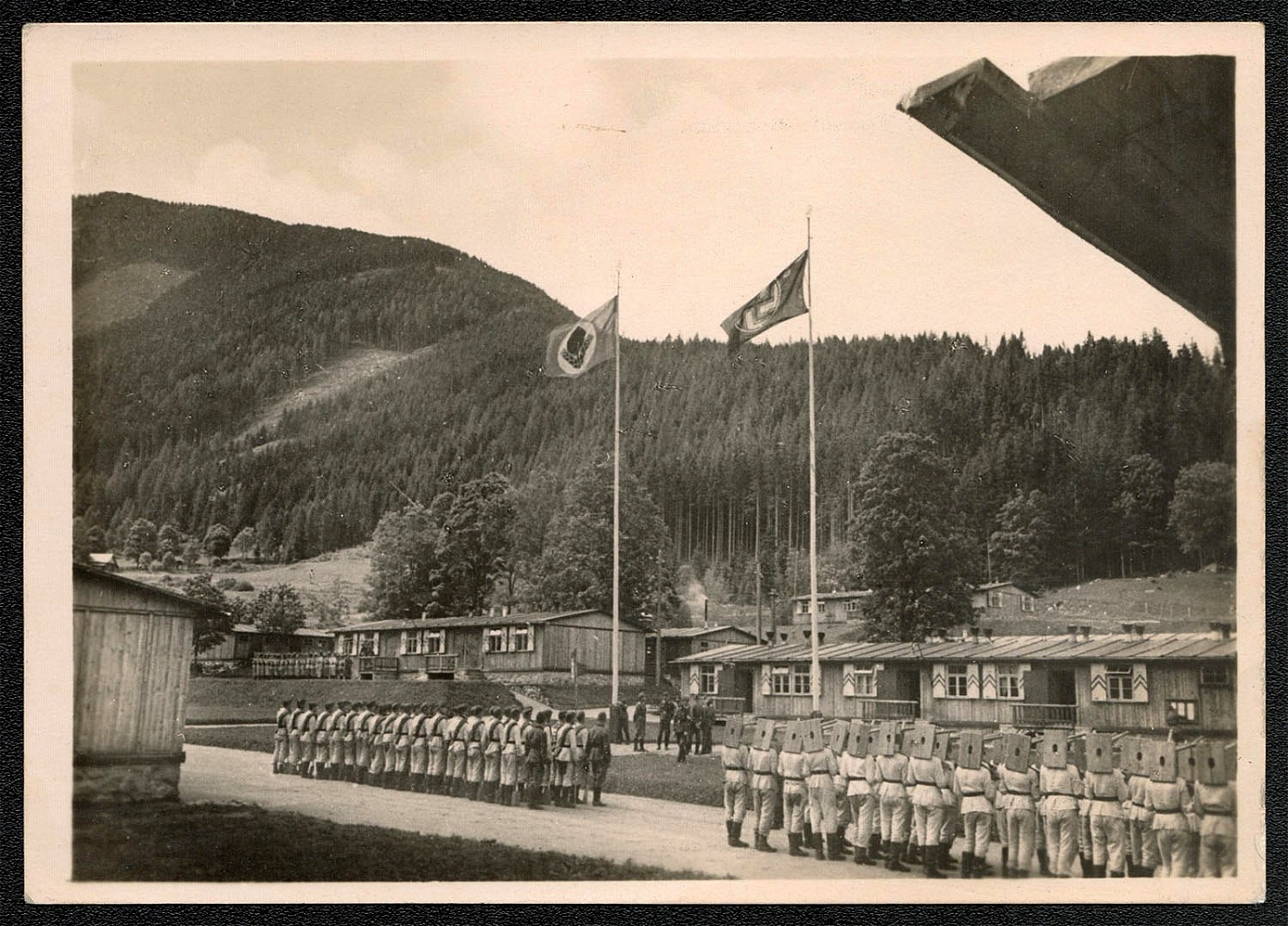
1937 “Our National Labor Service” After the morning roll call: The service day begins.
“Our National Labor Service” After the morning roll call: The service day begins. Aufnahme: Dorte Schmidt / Transocean Herausgegeben im Einvernehmen mit dem Chef des Press- u. Propagandaamtes beim Reichsarbeitsfiihrer Photograph by Dorte Schmidt I Transocean Published by agreement with the Chief of the Press and Propaganda Office of the Reichsarbeitsfiihrer Unmailed photocard published by Verlag Dr. Franz Vogtmann, Berlin SW 68, Wilhelmstr. 131/132.
Unsold
55
$25
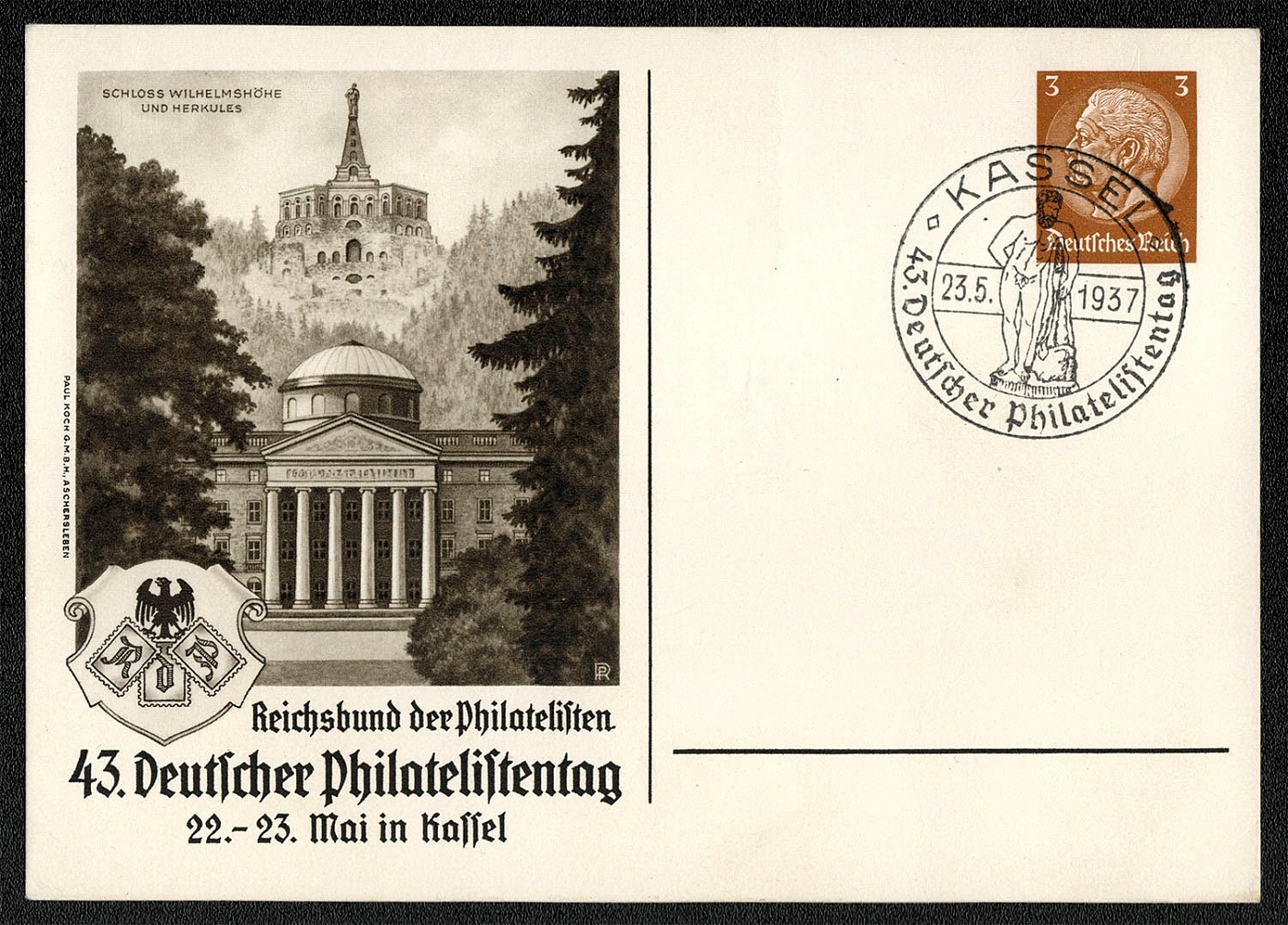
1937 43rd German Philatelic Day, 22—23 May in Kassel.
This privately printed post card (Paid Koch G.M.B.H., Aschersleben) with a favor cancellation dated 23 May 1937, commemorates the 43rd German Philatelic Day, 22—23 May in Kassel. The event was sponsored by the Reichsbund der Philatelisten. Depicted is the Schloss Wilhelmshohe and the colossal statue of Hercules which also appears in the commemorative cancellation. Schloss Wilhelmshohe, formerly the summer resident of the Electors of Hesse, is a freestone building in the classical style. It was erected in 1786-1801. The interior is in the style of the Empire and contains souvenirs of Napoleon III, who lived here as a prisoner of war in 1870-71. The Octagon, 1360 feet above the River Fulda, is an artificial ruin built in 1708-11 consisting of three vaulted stories. The platform, which commands a beautiful panorama, bears an obelisk, 98 feet in height, surmounted by the statue of Hercules. The statue, in copper, is itself 30 feet in height. The Grotto in front of the Octagon contains surprise waterworks.
Sold for:
$25
56
$25
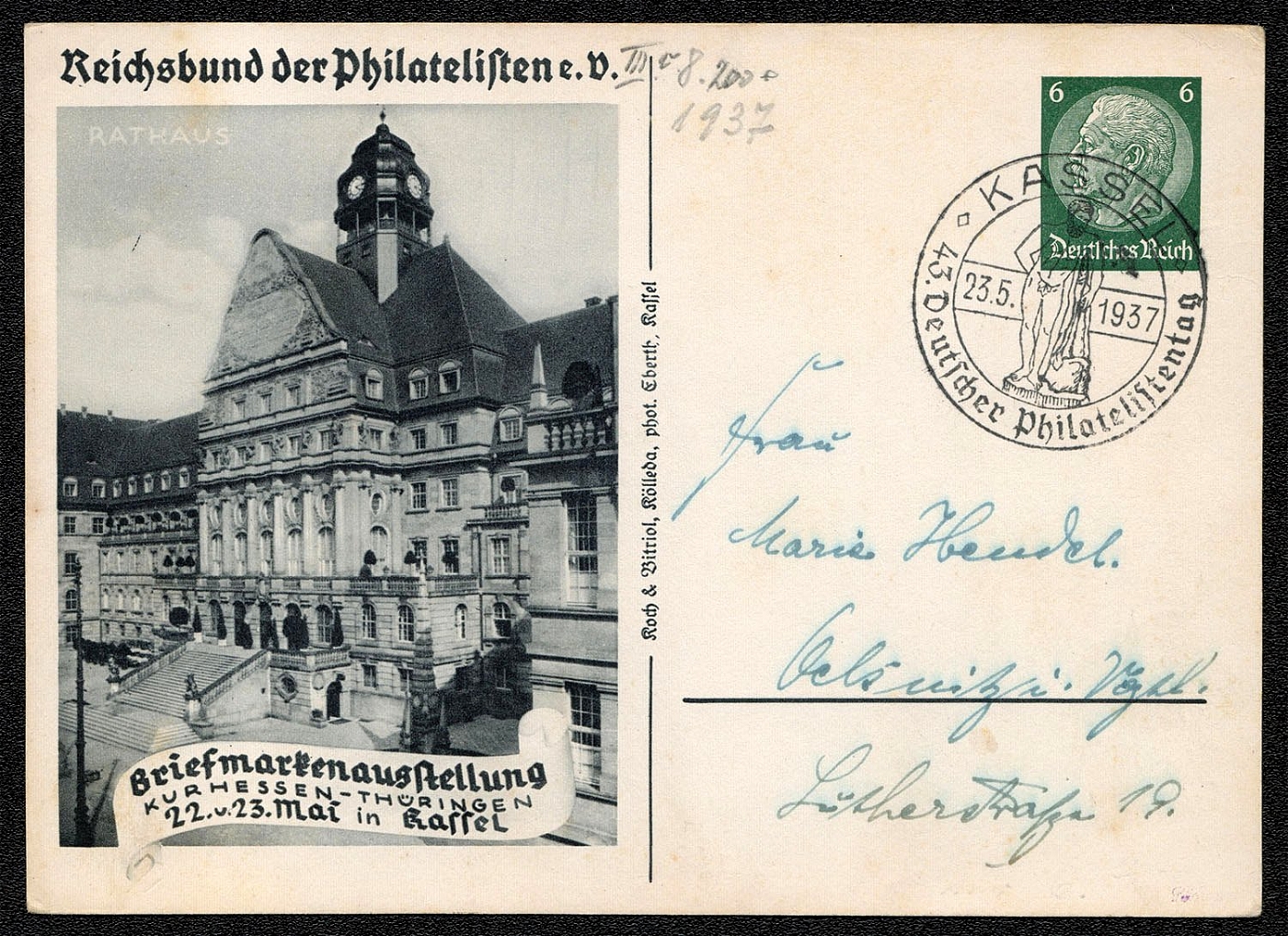
1937 Stamp Exhibition Kurhessen - Thuringia, 22—23 May in Kassel. Photo of Town Hall
1937 Stamp Exhibition Kurhessen - Thuringia 22—23 May in Kassel. Photo of Town Hall
Sold for:
$25
57
$18
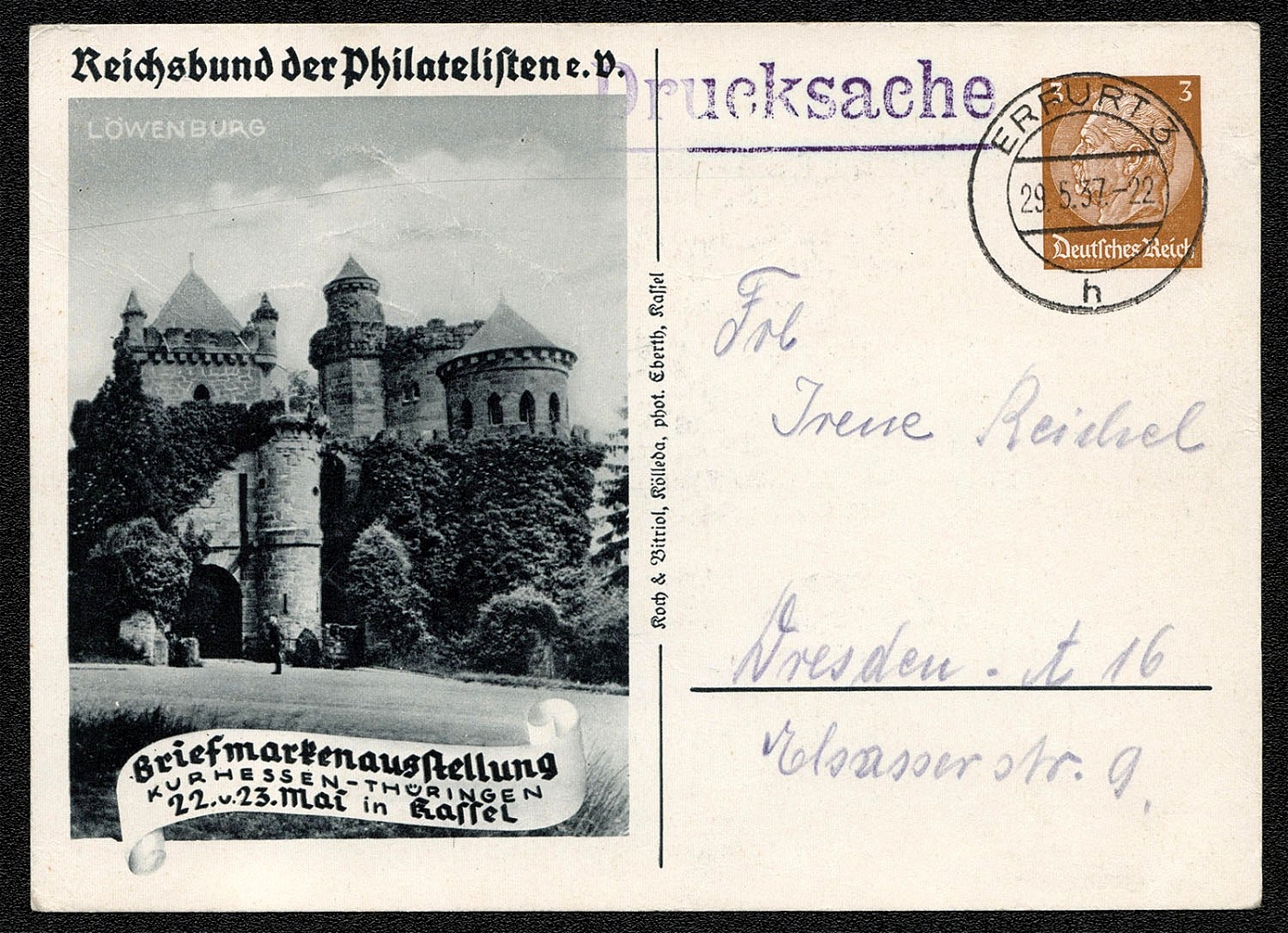
1937 Stamp Exhibition Kurhessen - Thuringia, 22—23 May in Kassel. Photo of Löwenburg Castle
1937 Stamp Exhibition Kurhessen - Thuringia, 22—23 May in Kassel. Photo of Löwenburg Castle
Sold for:
$18
58
$25
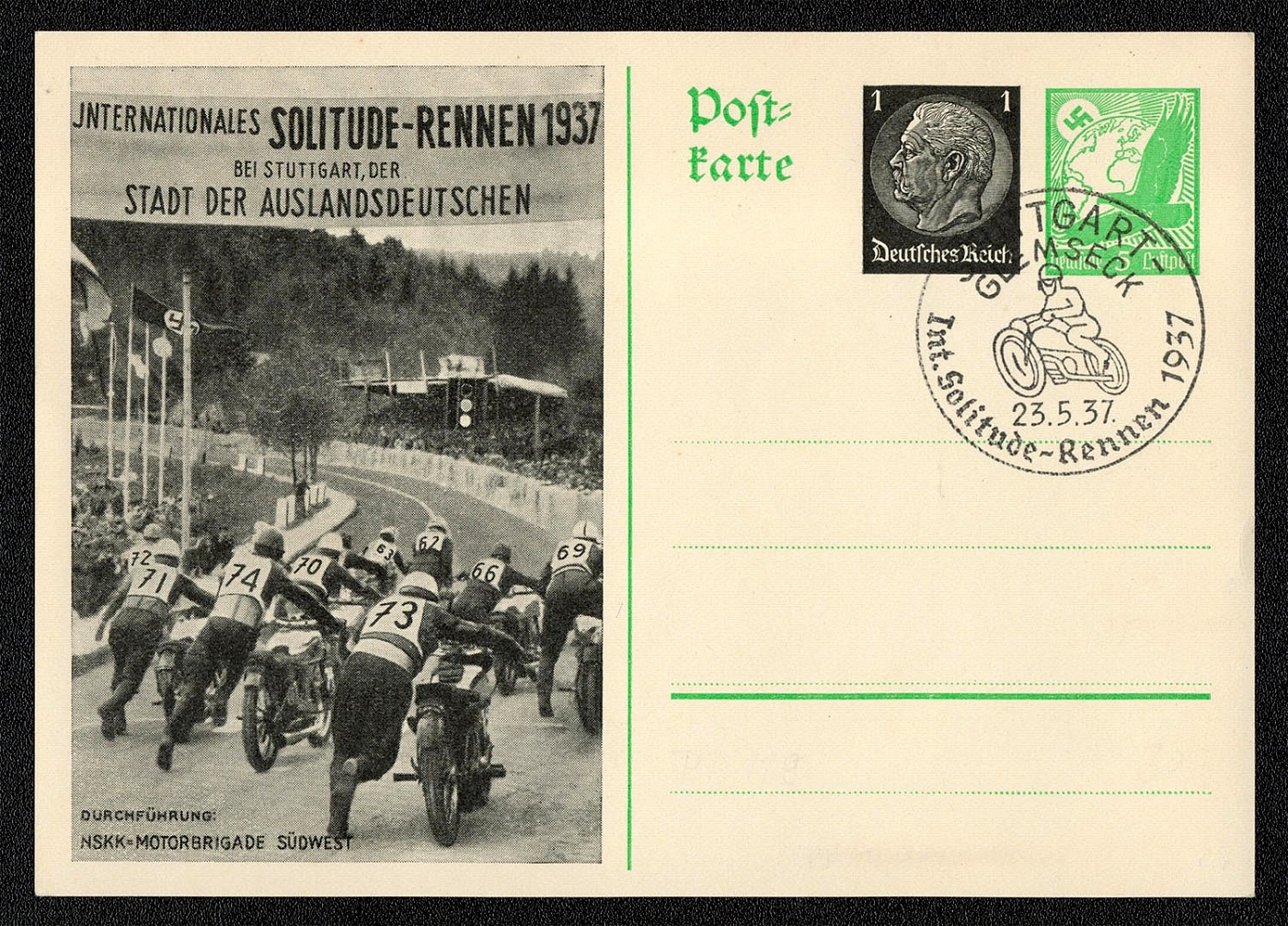
1937 International Race for Single Riders in Stuttgart
"Privately printed post card (Michel PP 145) issued for the 1937 Internationales Solitude-Rennen (International Race for Single Riders). Posted in Stuttgart-Glemseck on 23 May 1937, “The City of Germans Living Abroad."" The cachet depicts “The performance of the NSKK Southwest Motor Brigade."""
Sold for:
$25
59
-
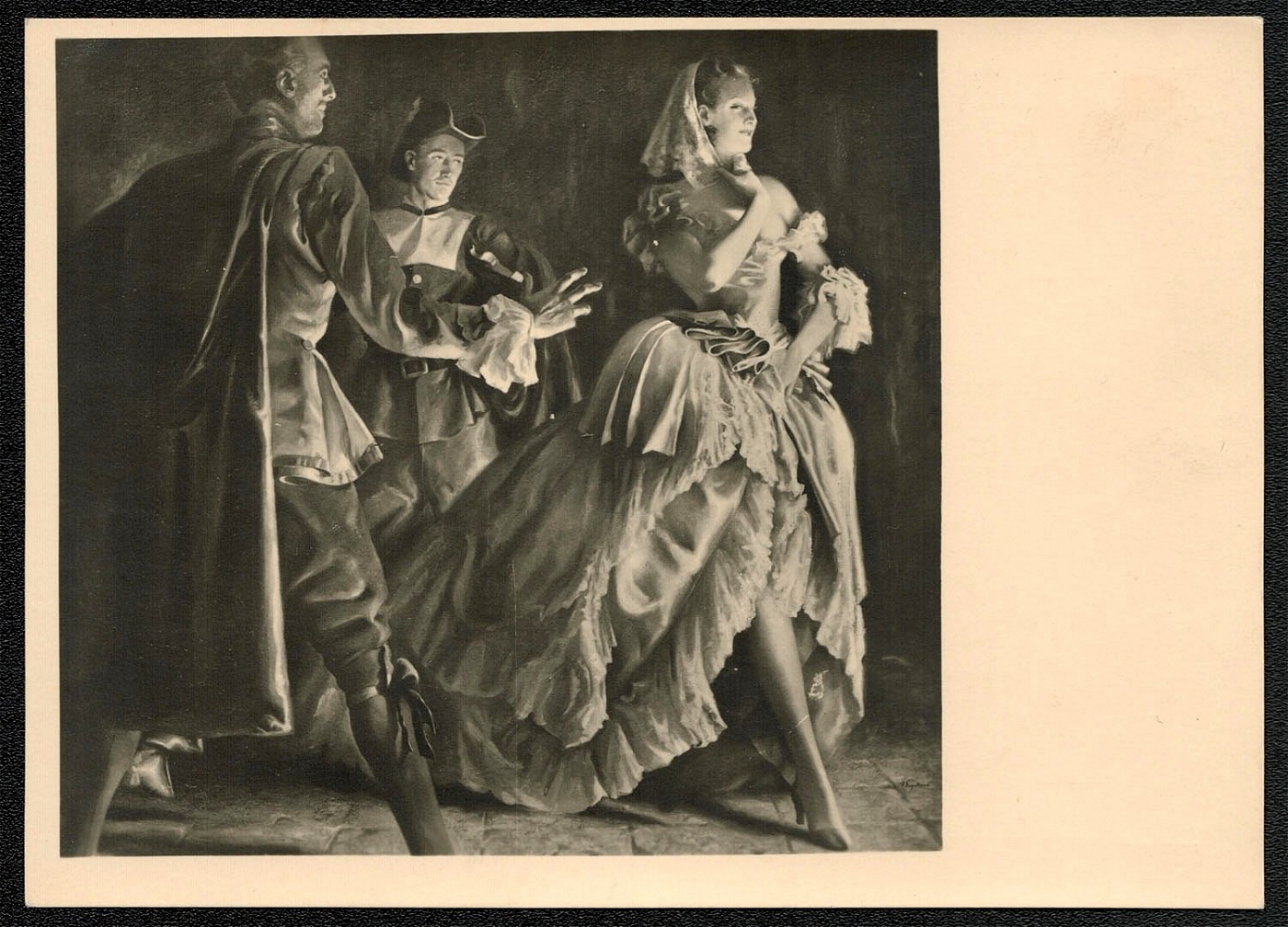
1937 Munich House of German Art Jul. Engelhard “The Encounter”
“The artist does not create for the artist: he creates for the people, and we will see to it that henceforth the people will be called in to judge his art. No one must say that the people have no understanding of a really valuable enrichment to its cultural life. Before the critics did justice to the genius of a Richard Wagner he had the people on his side.”
Unsold
60
-
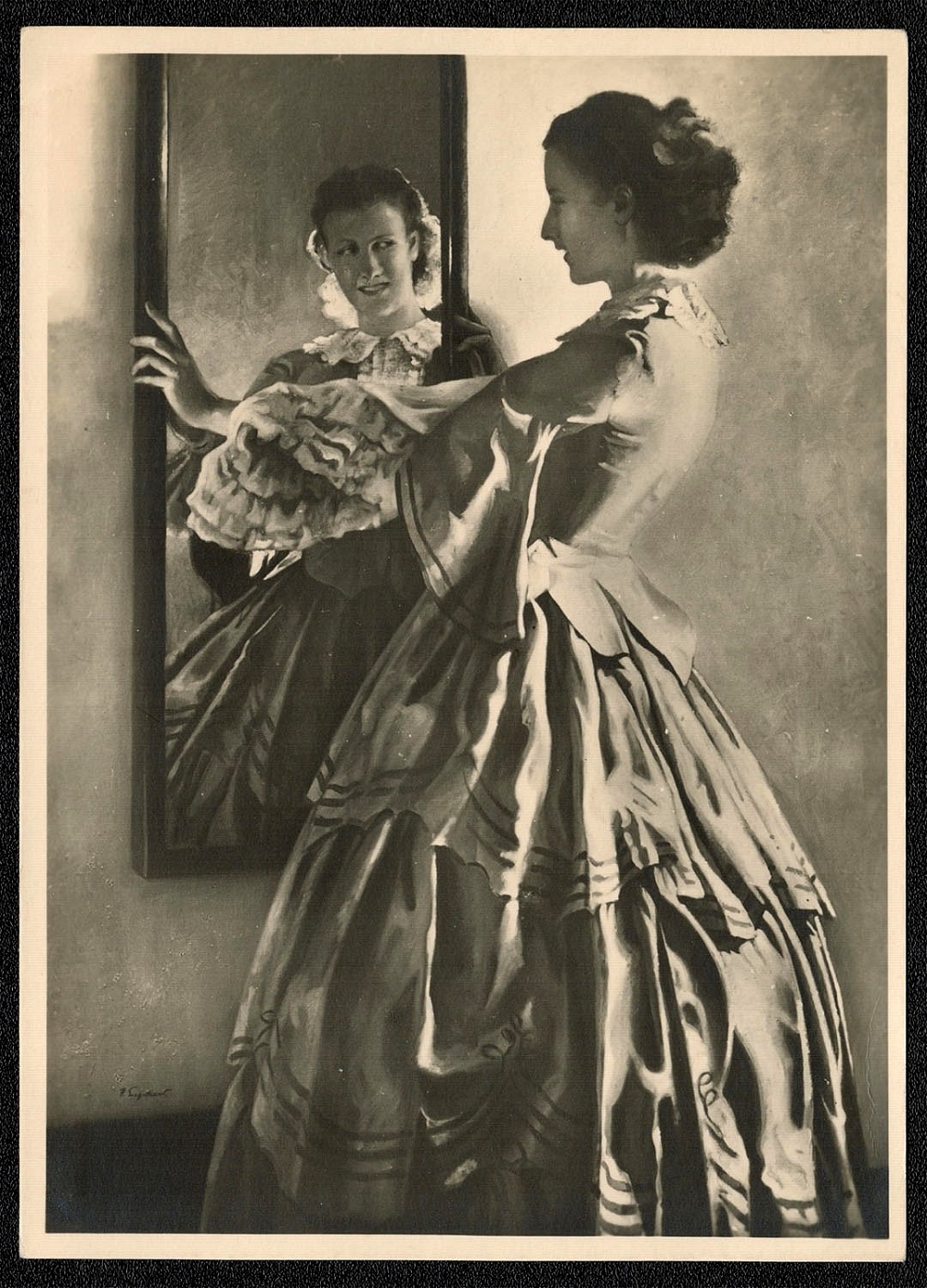
"1937 Munich House of German Art Jul. Engelhard “In Front of the Mirror"""
“The people regarded this art as the outcome of an impudent and unashamed arrogance, or of a simply shocking lack of skill. It felt that this art-stammer—these achievements which might have been produced by untaiented children of from eight to ten years old—could never be valued as an expression of our own times or of the German future.”
Unsold
61
-
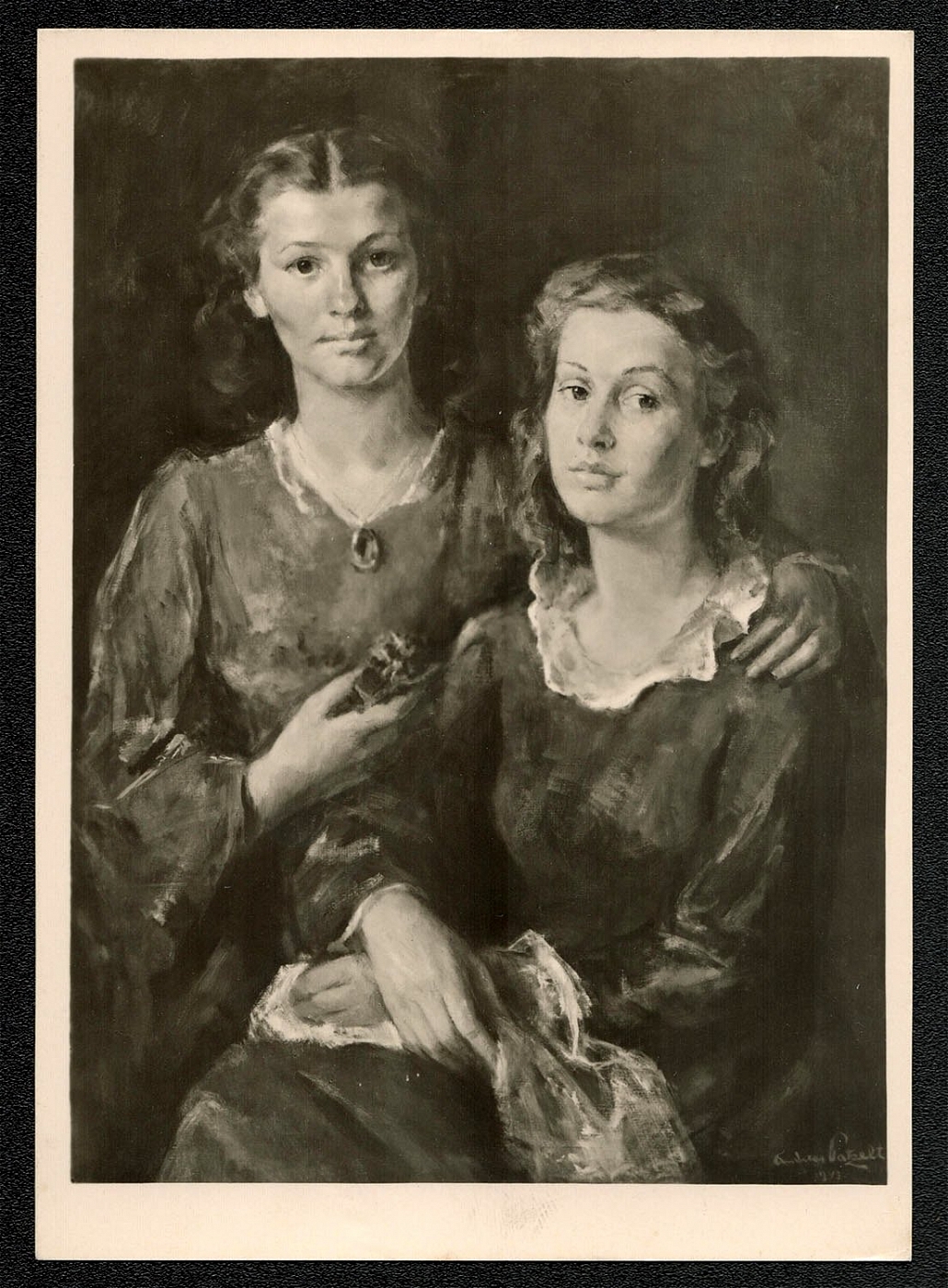
1937 Munich House of German Art Andreas Patzeit “Sisters”
“The people when it passes through these galleries will recognize in me its own spokesman and counselor. It will draw a sigh of relief and express its glad agreement with this purification of art. And that is decisive, An art which cannot count on the readiest and most intimate agreement of the great mass of the people, an art which must rely upon the support of small cliques, is intolerable. Such an art does but endeavor to confuse, instead of gladly reinforcing the sure and healthy instinct of a people.”
Unsold
62
-
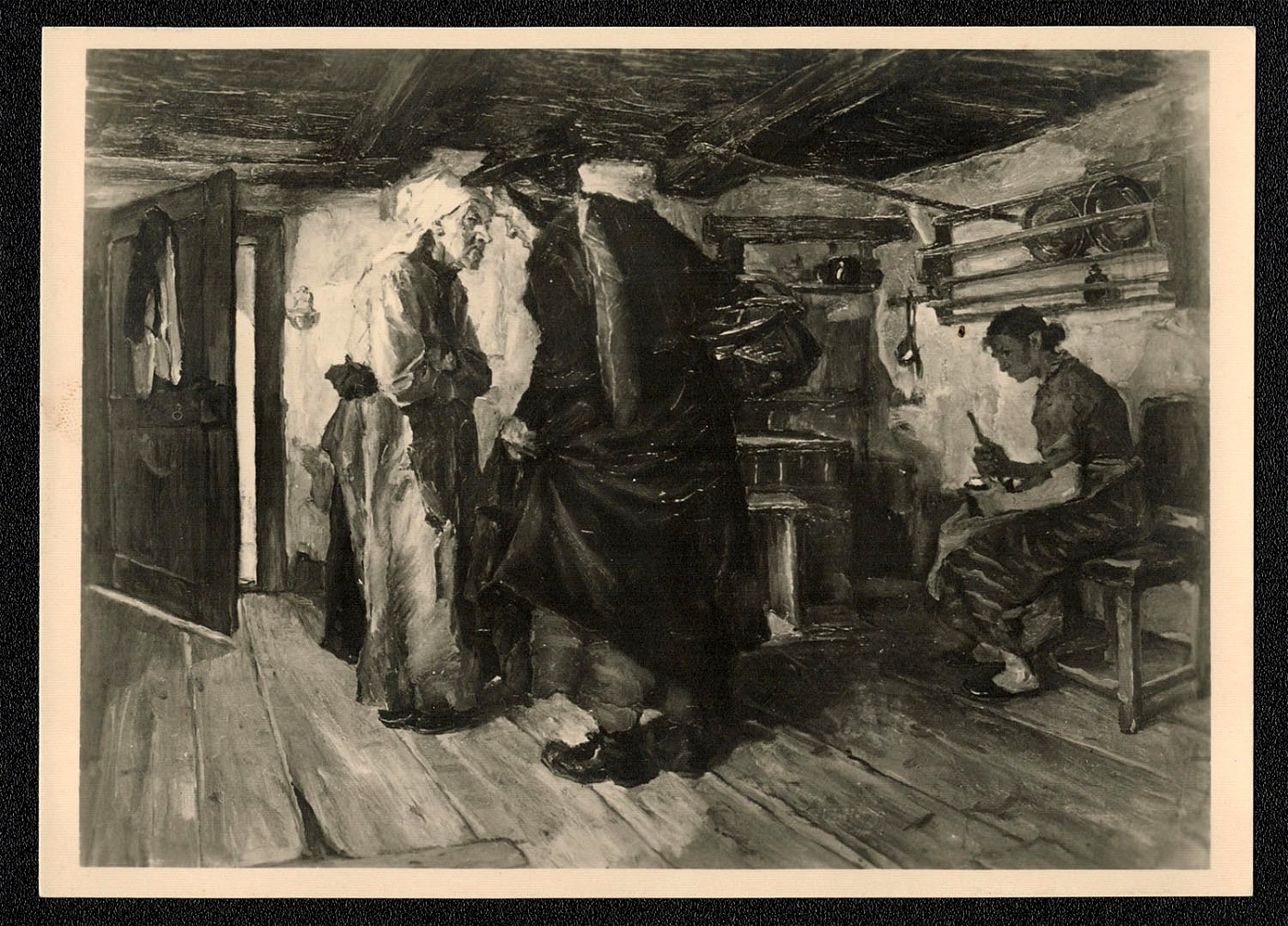
1937 Munich House of German Art Hans Best “A Visit Out of Town”
“The artist cannot stand aloof from his people. This exhibition is but a beginning, yet the end of the artistic stultification of Germany has begun. Now is the opportunity for youth to start its industrious apprenticeship. And, when a sacred conscientiousness at last comes into its own, then I doubt not that the Almighty, from the mass of these decent creators of art, will once more raise up individuals to the eternal starry heaven of the imperishable God-favored artists of the great periods. We believe that especially today, when in so many spheres the highest individual achievements are being manifested, so also in art the highest value of personality will once again assert itself.”
Unsold
63
-
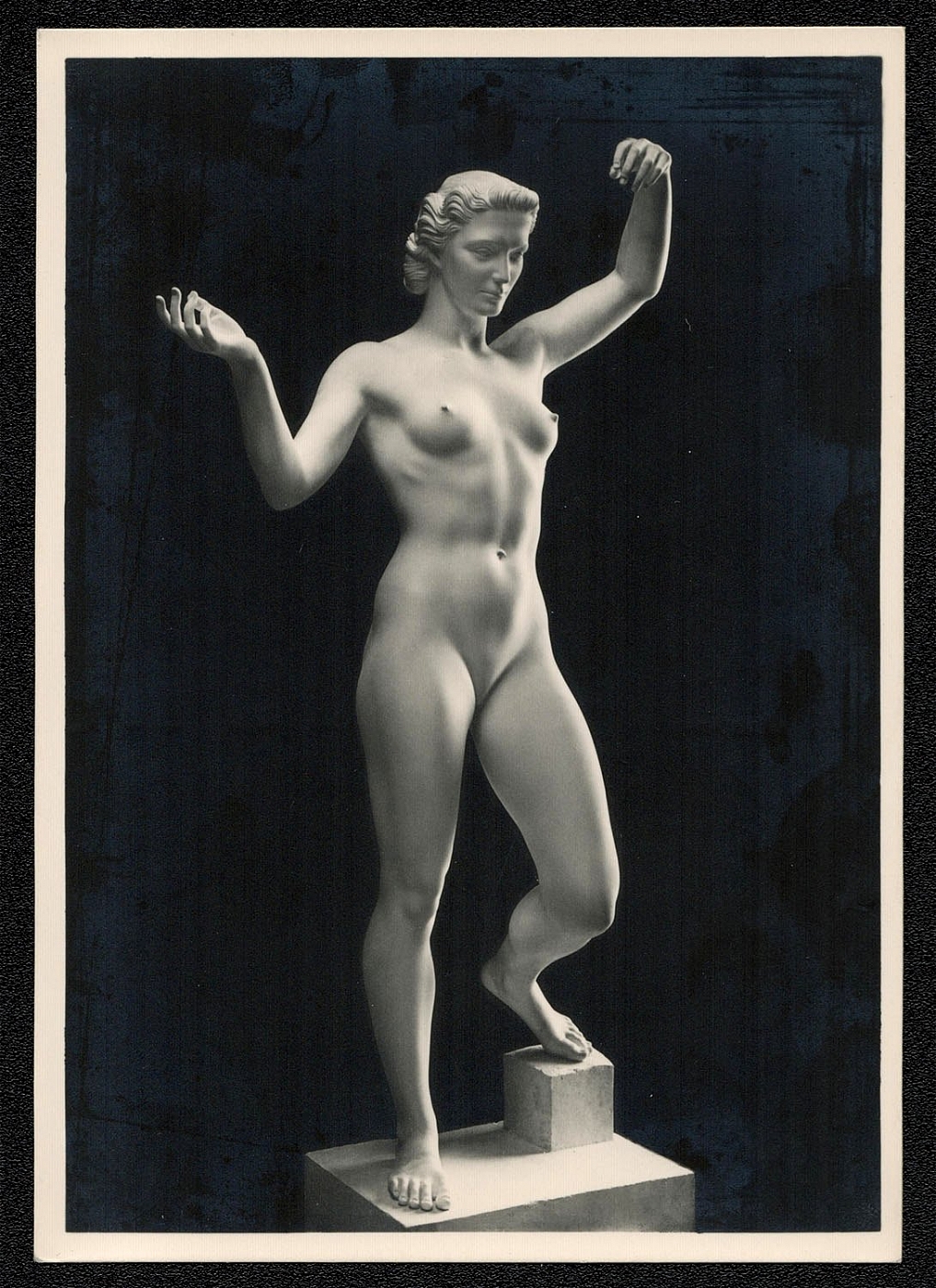
"1937 Sculpture Arno Breker ""Gracefulness"""
Sculpture (Bildhauerkunst) was an art form whose public nature and ability to influence the masses made it equally important with architecture as a means of self- presentation for the cultural policy of the Third Reich. As monumental plastic art (sometimes actually combined with architecture of similarly awe-inspiring effect) sculpture was to create “images of a community united in a common ideal.” Building facades and open squares were embellished with large sculptures. offices and meeting rooms, with reliefs and busts.
Unsold
64
-
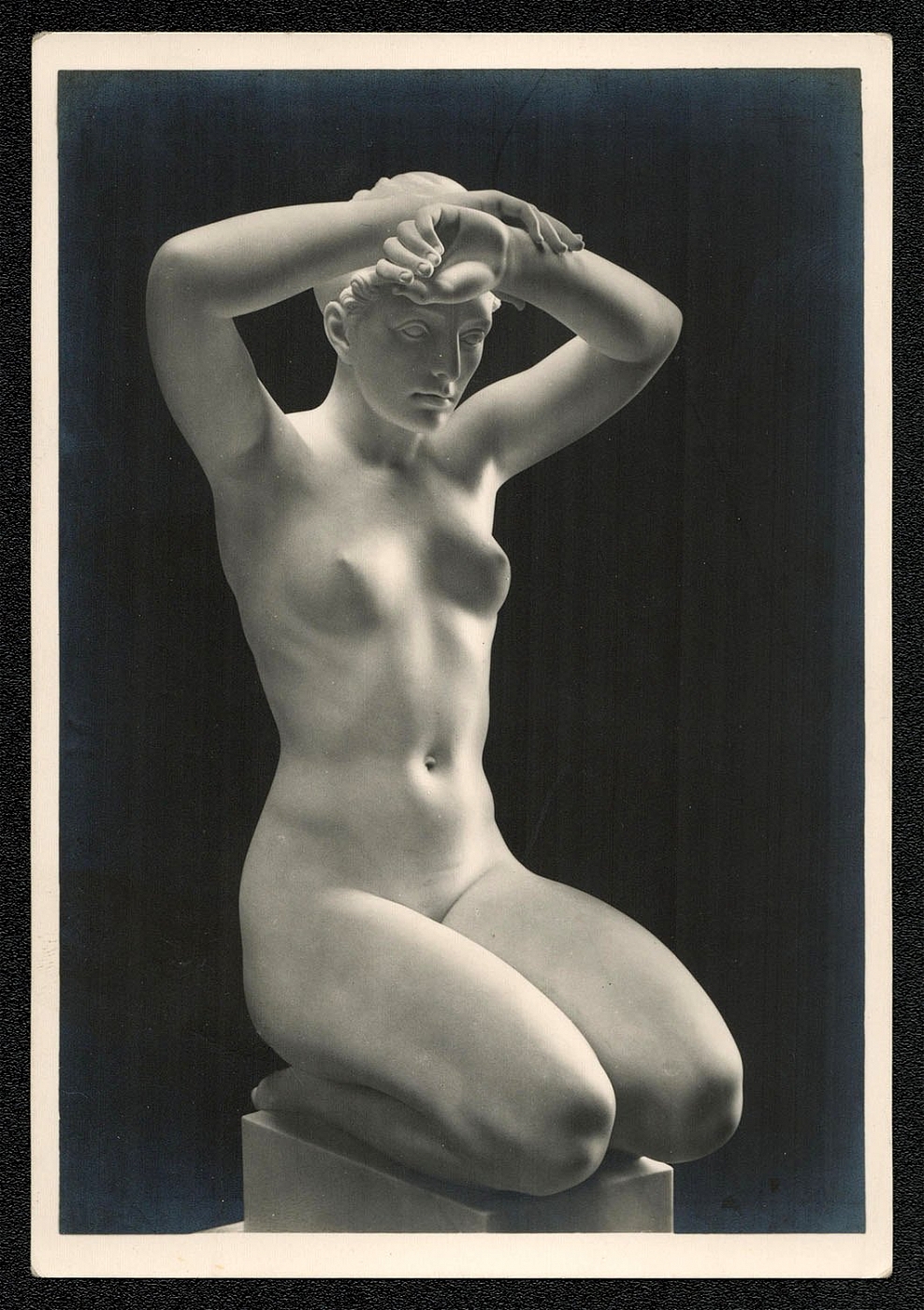
"1937 Sculpture Arno Breker ""The Kneel"""
In sculpture, more than in other branches of the arts, the National Socialists were able to connect with prior stylistic developments. Sculpture was an art form traditionally favored by those in authority. it was usually too large and too expensive for private ownership. Moreover, as a form of public art, statures were usually figurative and thus comprehensible to the masses.
Unsold
65
-
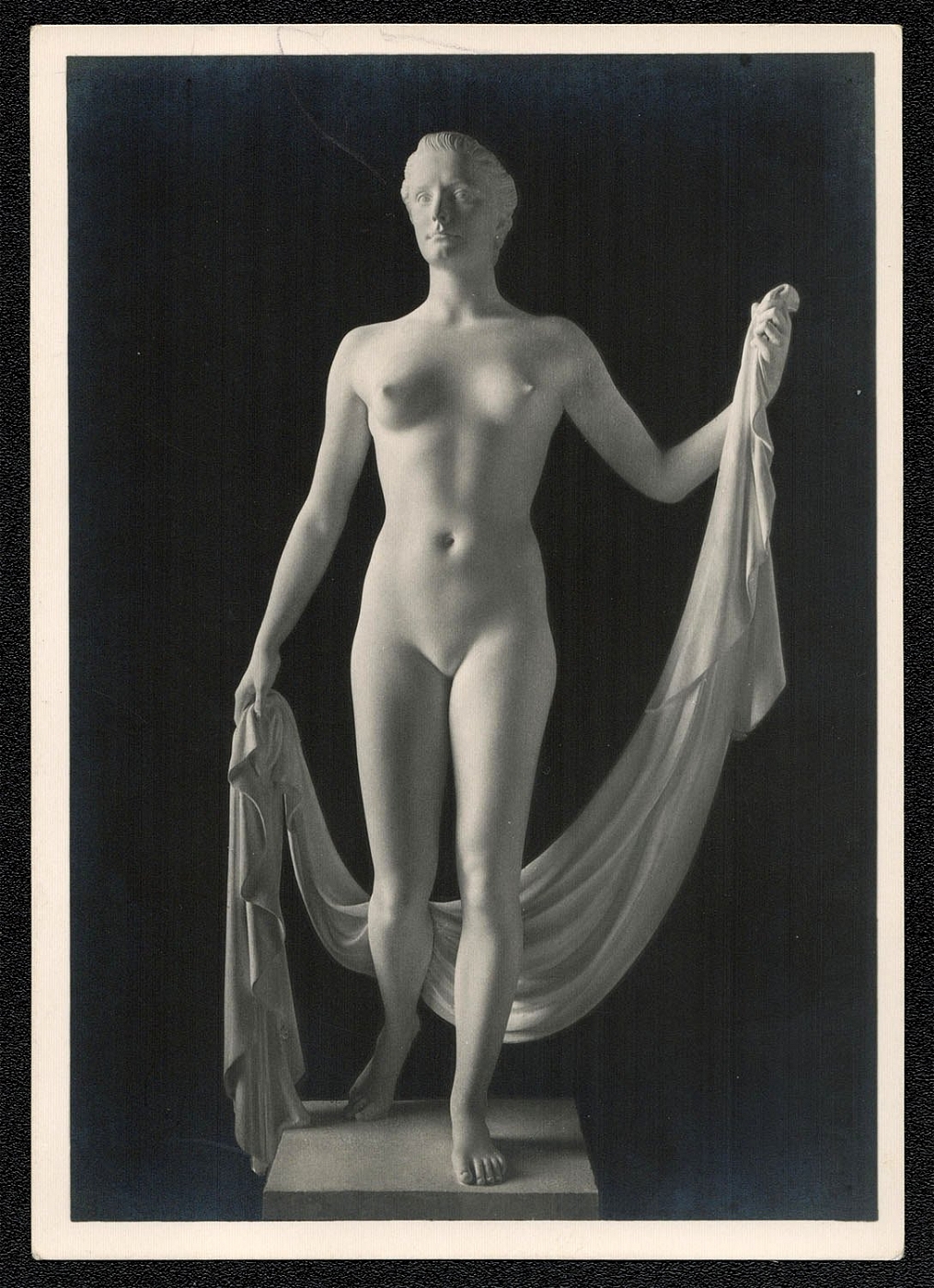
"1937 Sculpture Arno Breker ""The Stride"""
After 1933, internationally recognized sculptors such as Arno Breker, Georg Kolbe and Fritz Klimsch created with state support realistic human figures conforming to an image of the classical antiquity toward which National Socialist aesthetics was primarily oriented. In sculpture, classical Greek was not to be an unattainable ideal, but a living reality. Sculptors who departed from strict attention to form were banned—as “destroyers of form” and “art-Bolsheviks”—from working.
Unsold
66
-
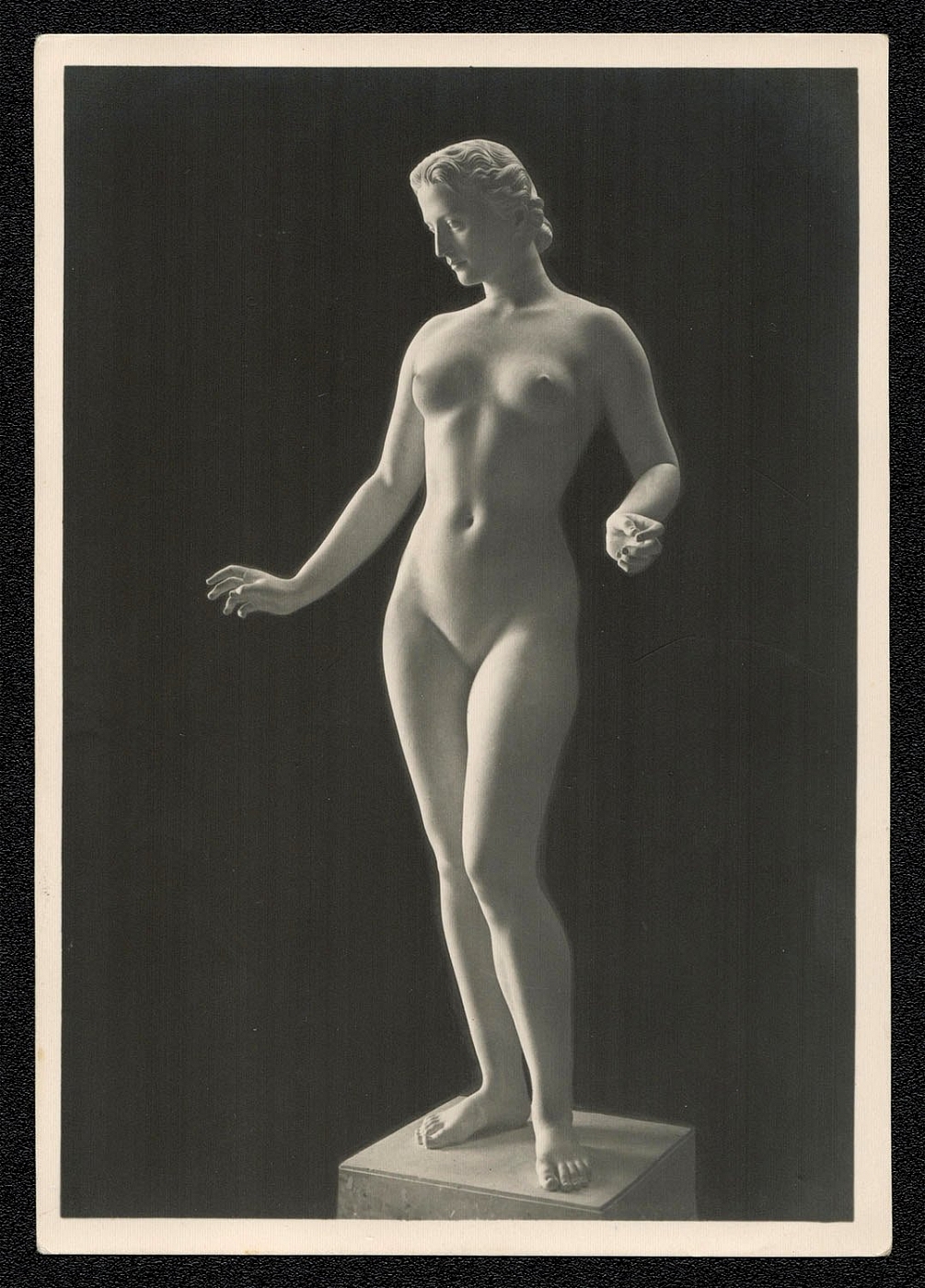
"1937 Sculpture Arno Breker ""Psyche"""
Thus figures of a stereotypical German man or woman came to dominate sculpture as a central motif. Female figures were characterized by “grace and devotion,” and based on a concept of their traditional role as childbearer. Arno Breker (1900-1980?) sculptor of this representative collection of female nudes, was born in Elberfeld and studied in Diisseldorf (1928-1932). After a stay in Paris, he settled in Berlin in 1933. He is unquestionably the most noted of the Third Reich era artists. His statues for the Olympic Stadium (Silver Medal in 1936) so pleased Hitler and Albert Speer, that Breker was showered with public commissions.
Unsold
67
-
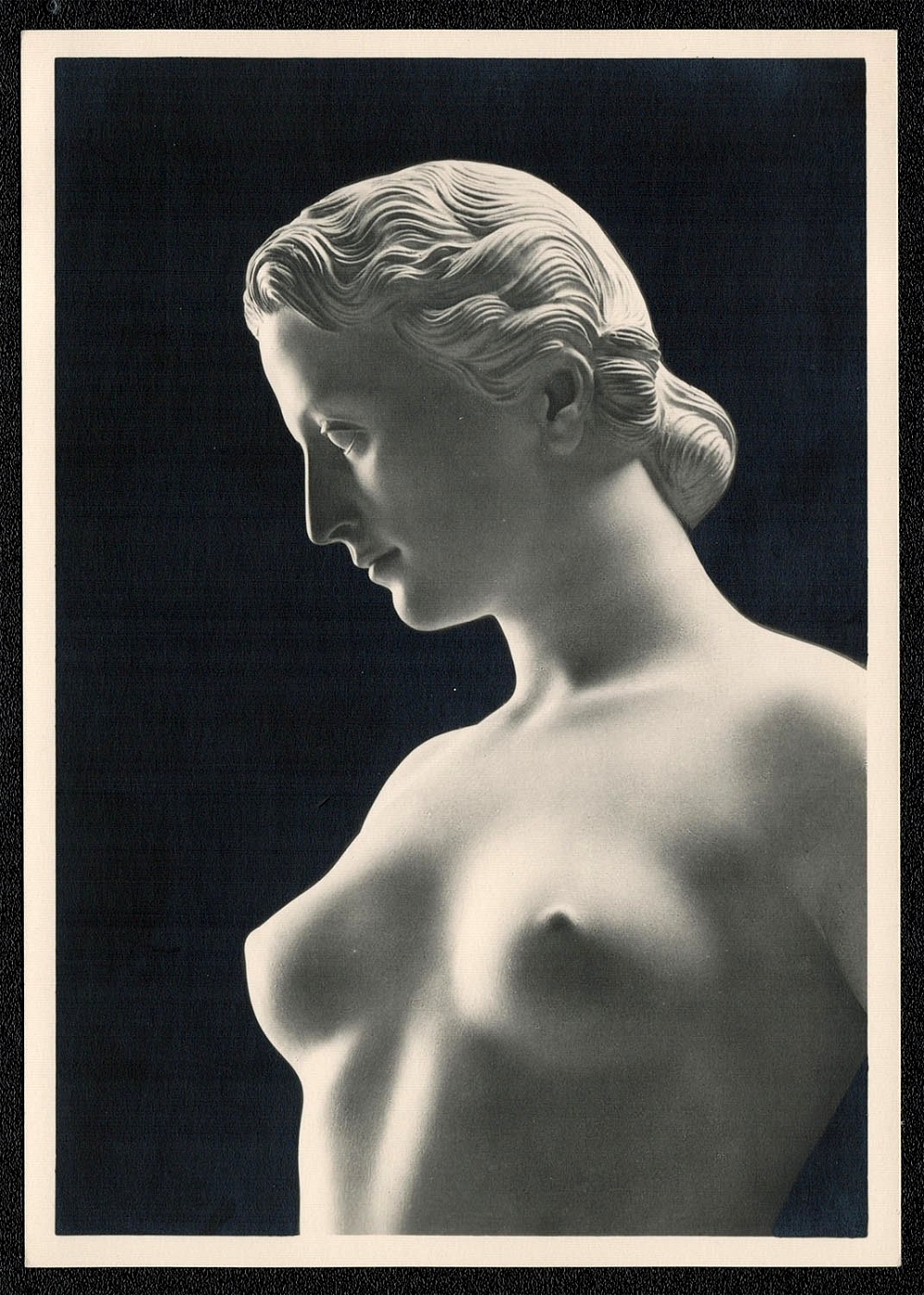
1937 Sculpture Arno Breker Neckline of “Psyche”
Cultural ideologue Alfred Rosenberg saw in Breker’s monumental figures a representation of the “force and willpower” (Wucht and Willenhaftigkeit) of the age. Breker sculpted the heroic statues “Party and “Army” for the new Reich Chancellery, where they flanked the main entrance. He became a professor at the Academy of Fine Arts in Berlin in 1938. In 1942 the Vichy government arranged a large exhibition of Breker’s works in Paris, on the occasion of which the elderly sculptor Aristide Maillol praised him as the “German Michelangelo.” Postwar critics not only criticized Breker for his services to a criminal regime, but also found fault with the “empty pathos.”
Unsold
68
-
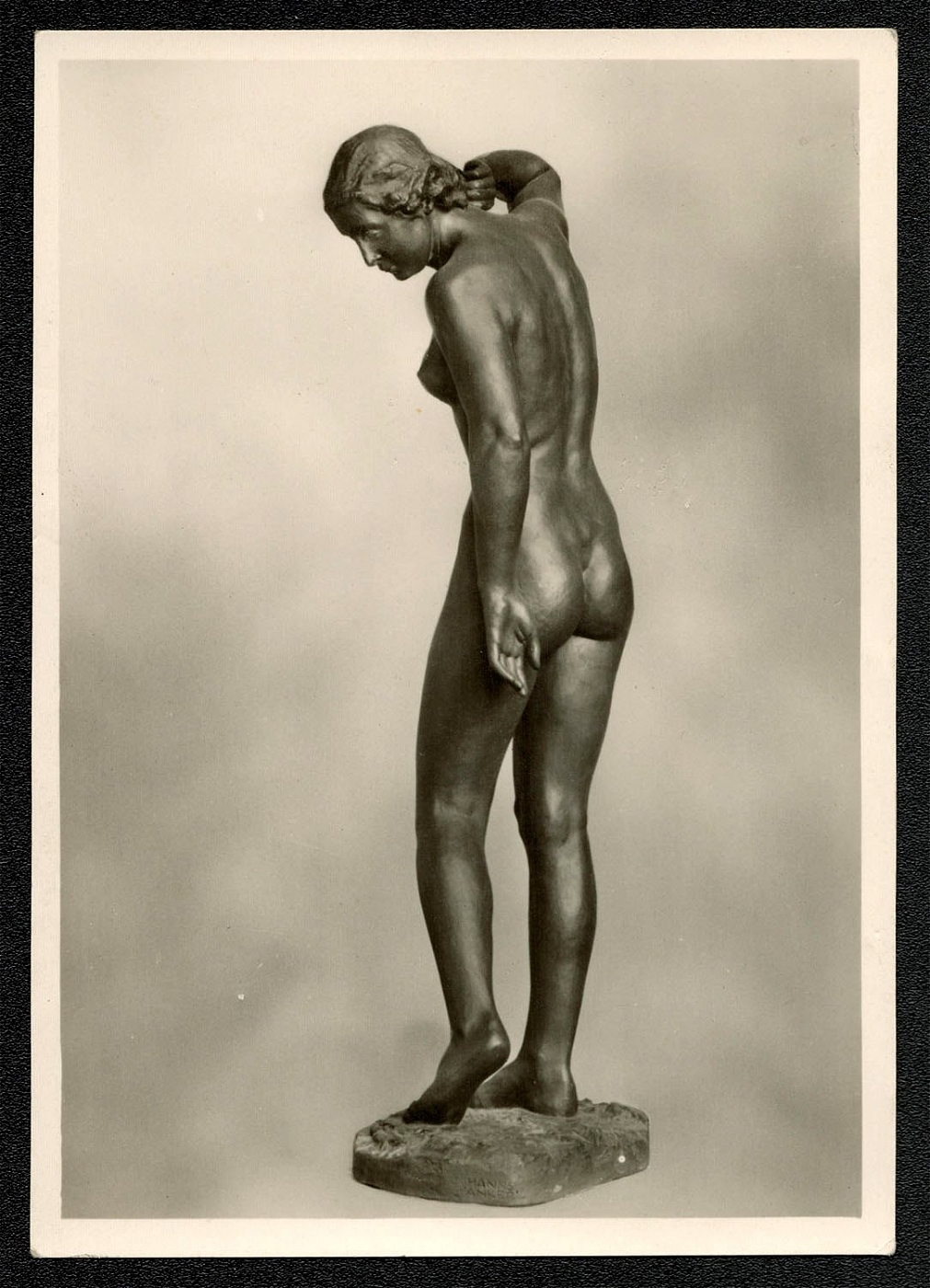
1937 Sculpture Hans Anker “The Morning”
Alfred Rosenberg, who in 1929 founded the Kampfbund fur deutscher Kultur (Combat League for German Culture), devised the Third Reich’s official aesthetic with the aid of the anthropologist Professor Gunther and the architect Schulze-Naumburg. The Auslesevorbilder (exemplars of selection) were culled from Greek classicism and the German Romanesque style.
Unsold
69
-
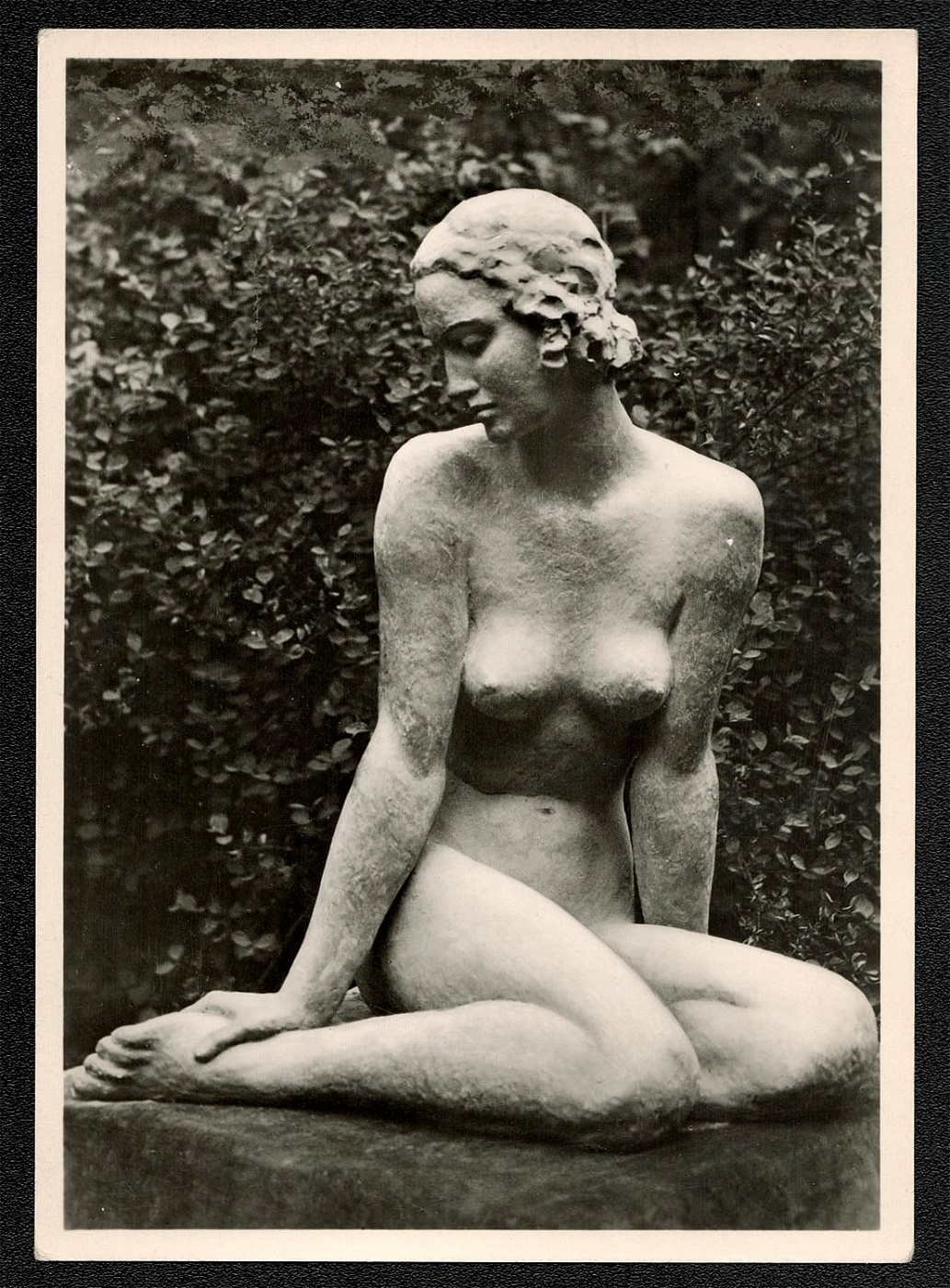
1937 Sculpture Fritz Klimsch “In the Sun”
Joseph Goebbels initially veiled the National Socialist arts purge behind a facade of relative moderation because he feared that total artistic “co-ordination” would discredit Germany in the eyes of the world. This twilight situation was of short duration. arbitrating in the aesthetic demarcation dispute between Rosenberg and Goebbels, Hitler at last promulgated his irrevocable late-Victorian art canon.
Unsold
70
-
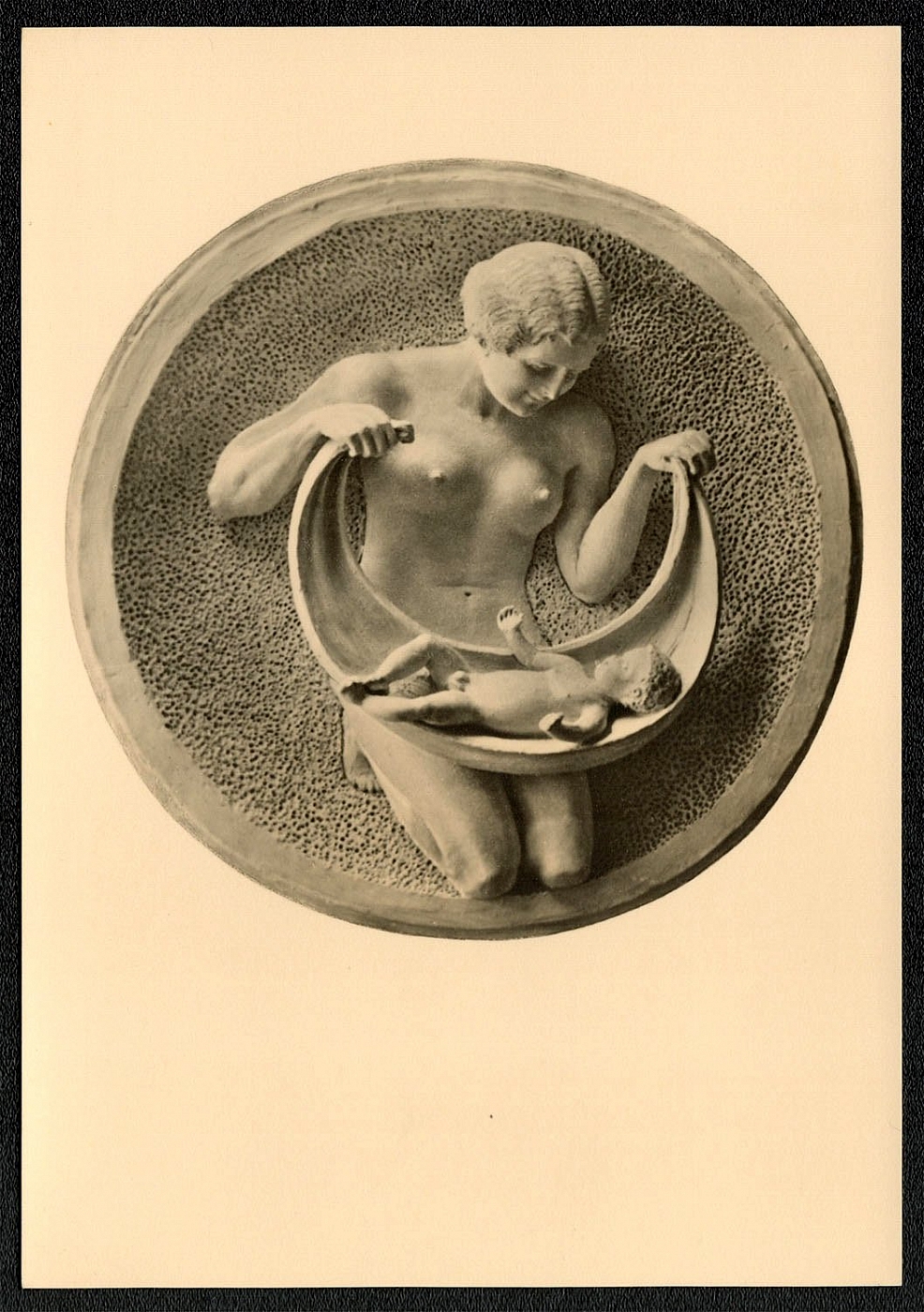
1937 Sculpture Hermann Jacobs “Mother Fortune”
Goebbel’s Reich Chamber of Art squeezed Germany’s 42,000 NS-approved sculptors, painters, architects, graphic artists and art publishers into one organizational straitjacket.
Unsold
71
-
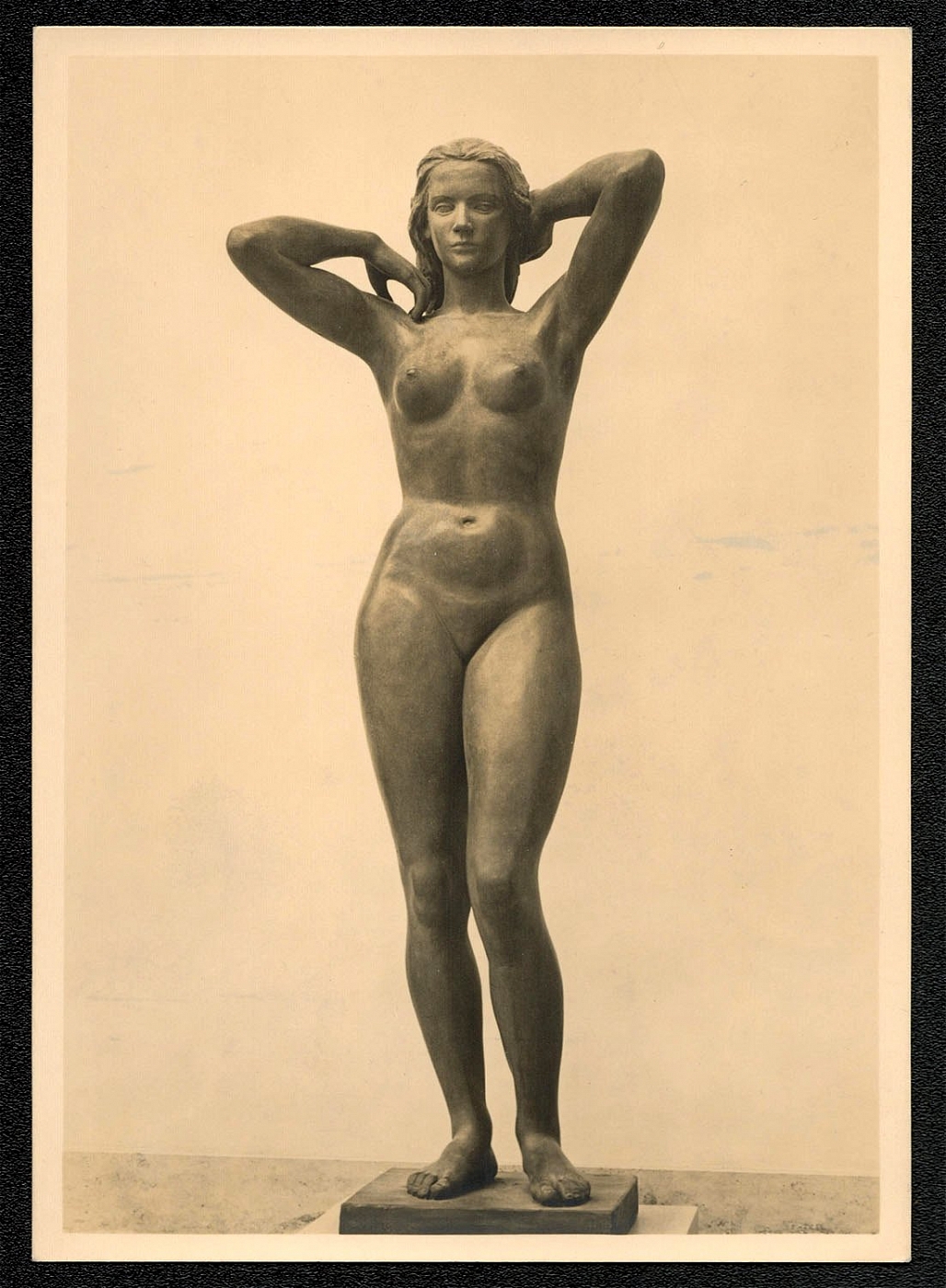
72
-
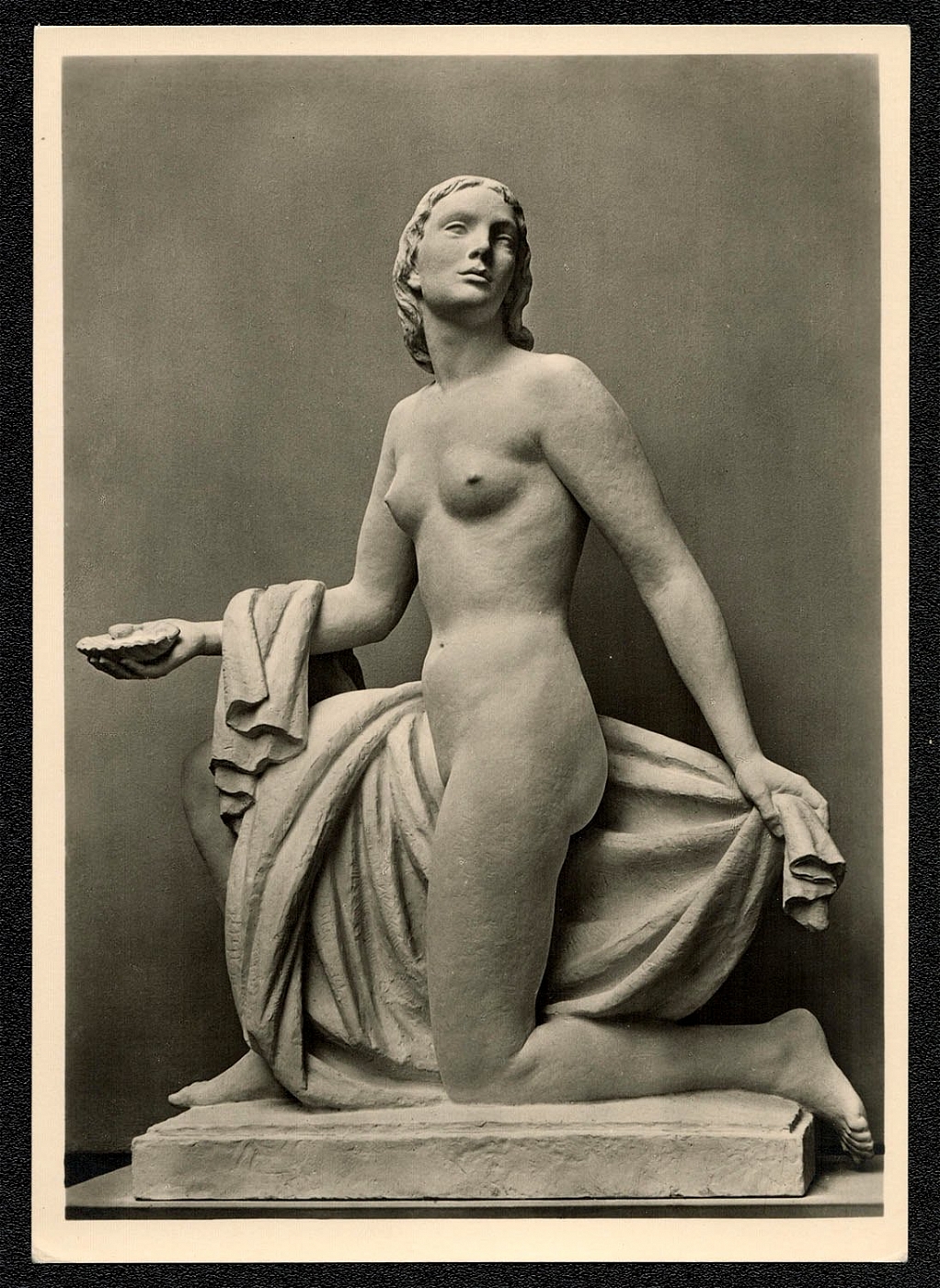
73
-
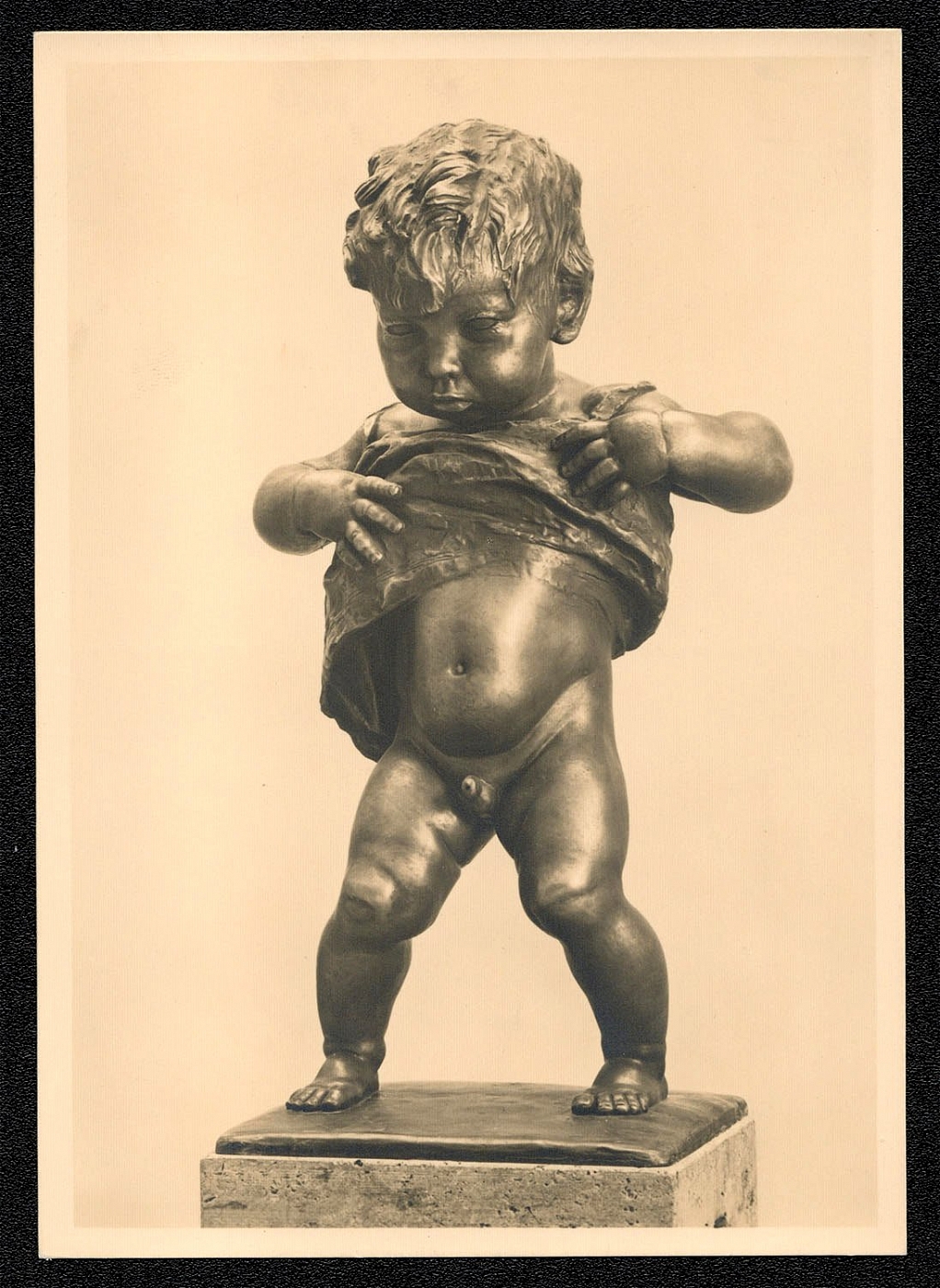
1937 Sculpture Gustav A. Bredow “Fountain Boy”
1937 Sculpture Gustav A. Bredow “Fountain Boy”
Unsold
74
-
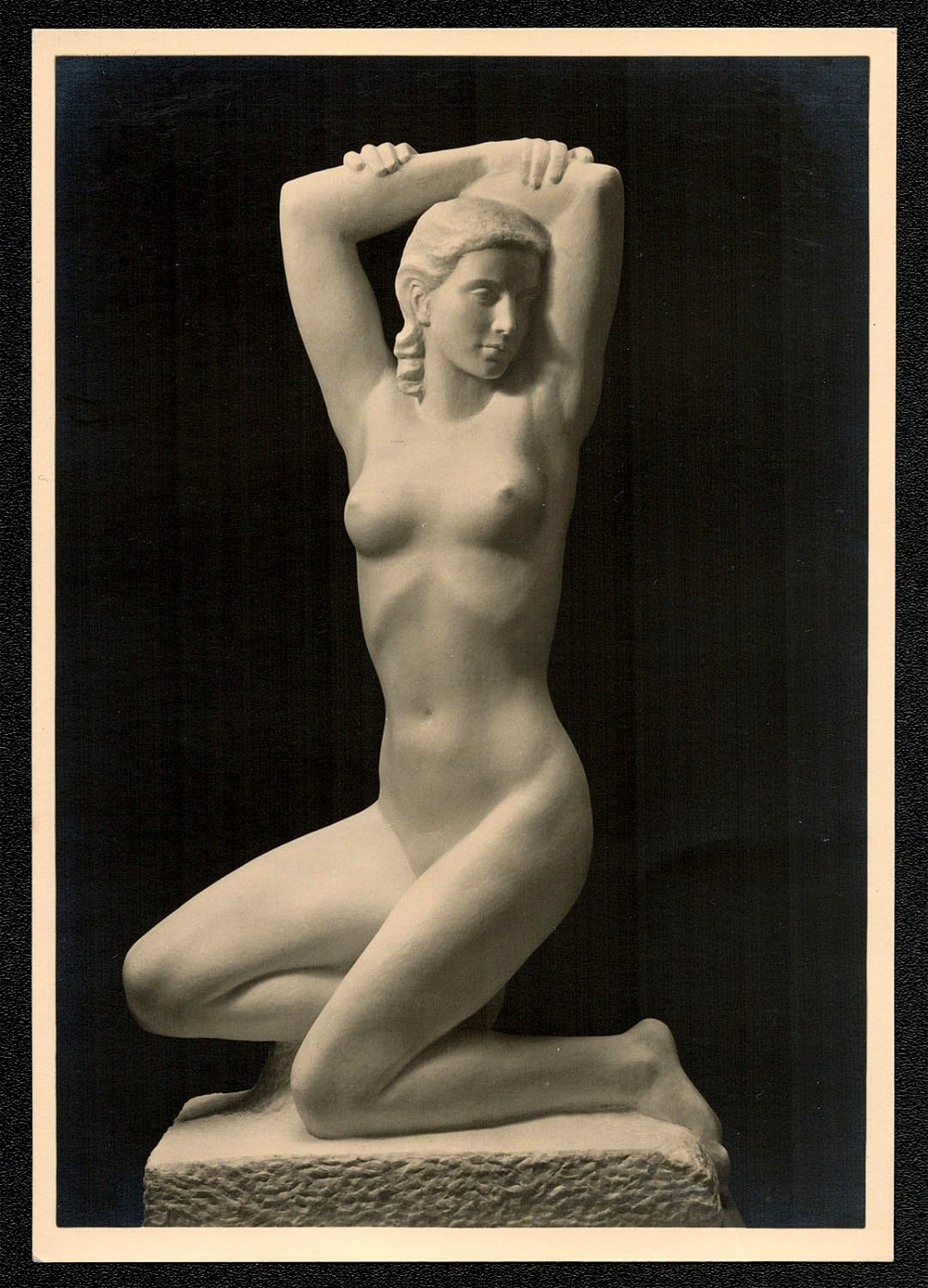
75
-
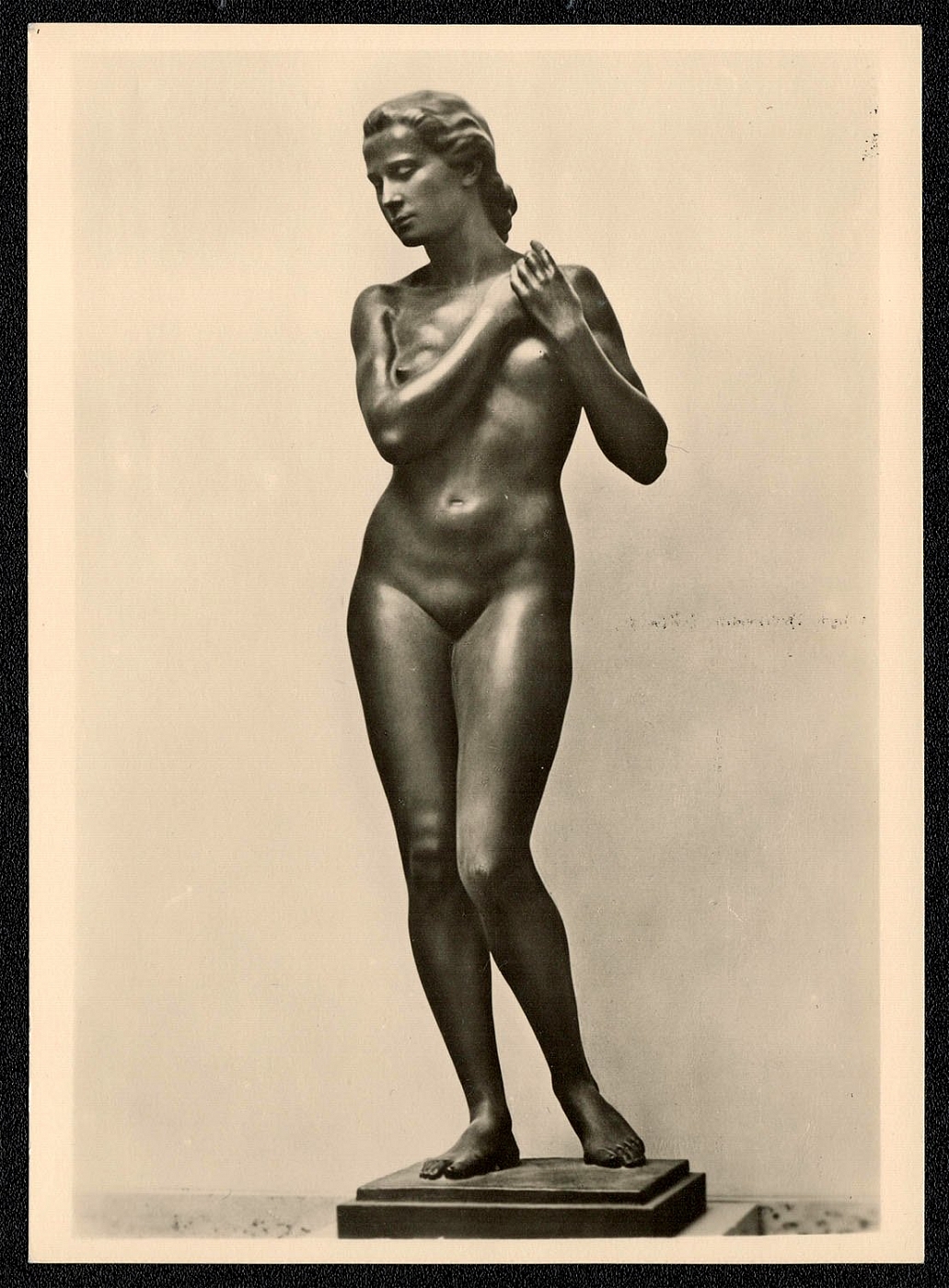
"1937 Sculpture Rudolf Kaesbach “Springtime of Life"""
"1937 Sculpture Rudolf Kaesbach “Springtime of Life"""
Unsold
76
-
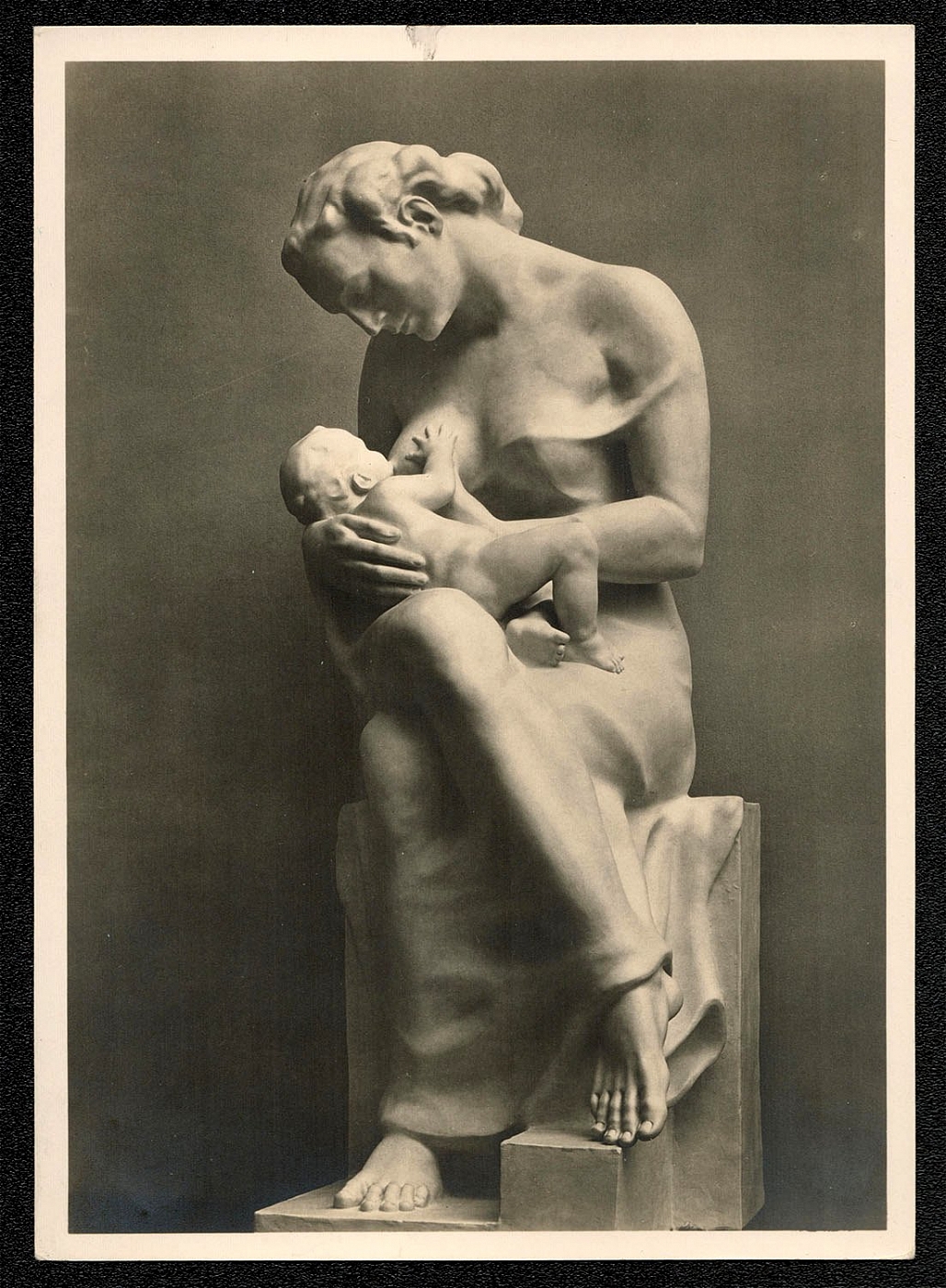
1937 Sculpture Josef Thorak “Mother with Child”
1937 Sculpture Josef Thorak “Mother with Child” The sculptor Professor Thorak was popularly named “Professor Thorax” because of his preoccupation with Herculean masculinity.
Unsold
77
$35
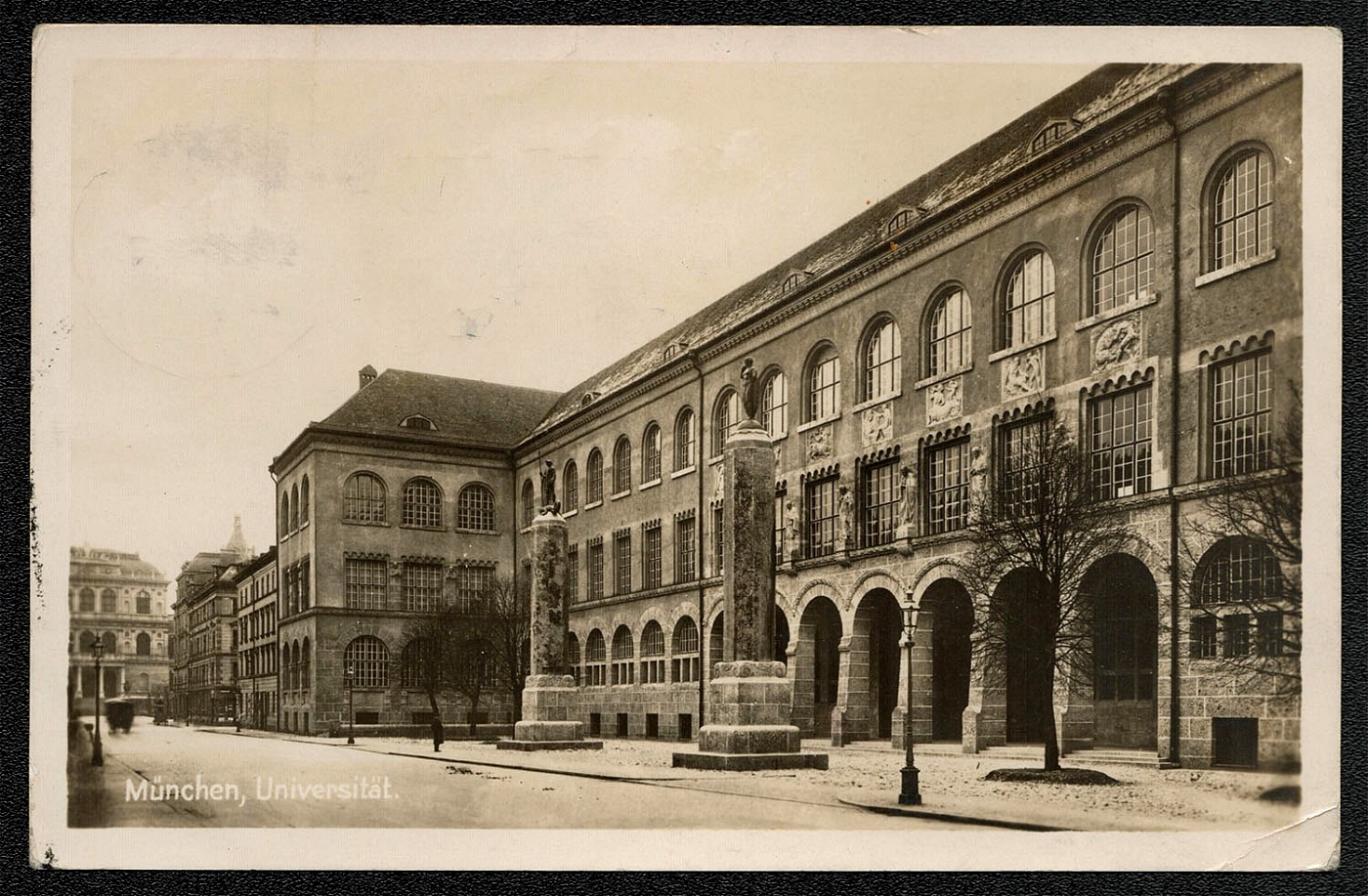
1937 Munich University Franked with Sc 422 and posted 17 August
Photocard published by A. Lengauer, Miinchen. Franked with Sc 422 and posted 17 August 1937 at Postamt Miinchen, Station “b.” The publicity cancel is for the International Leipzig Fair, 29 August through 2 September 1937. When Reich Education Minister Rust asked the eminent Gottingen mathematician, David Hilbert, if his institute had suffered as a result of the departure of the Jews and their friends, the professor replied, “Suffered? No, it hasn’t suffered, Herr Minister, it just doesn’t exist any more.” A prime function of the powerful National Socialist Lecturer’s Association (NS-Dozentenbund) was the selection and training of university personnel. It had severe shortcomings, however. In 1937, Professor Ernst Krieck, an early NS convert, surprised academics by publicizing his grave concern about the future supply of professors, in terms both of quantity and of quality. University rectors tried to exculpate themselves by emphasizing a decline of standards among students. The NS Students’ Association denied this, and quoted a certain amount of evidence to the contrary, whereupon the rectors issued a heretical but irrefutable rejoinder to the effect that the achievements of which the students’ association boasted rested on foundations laid before 1933.
Sold for:
$35
78
$35
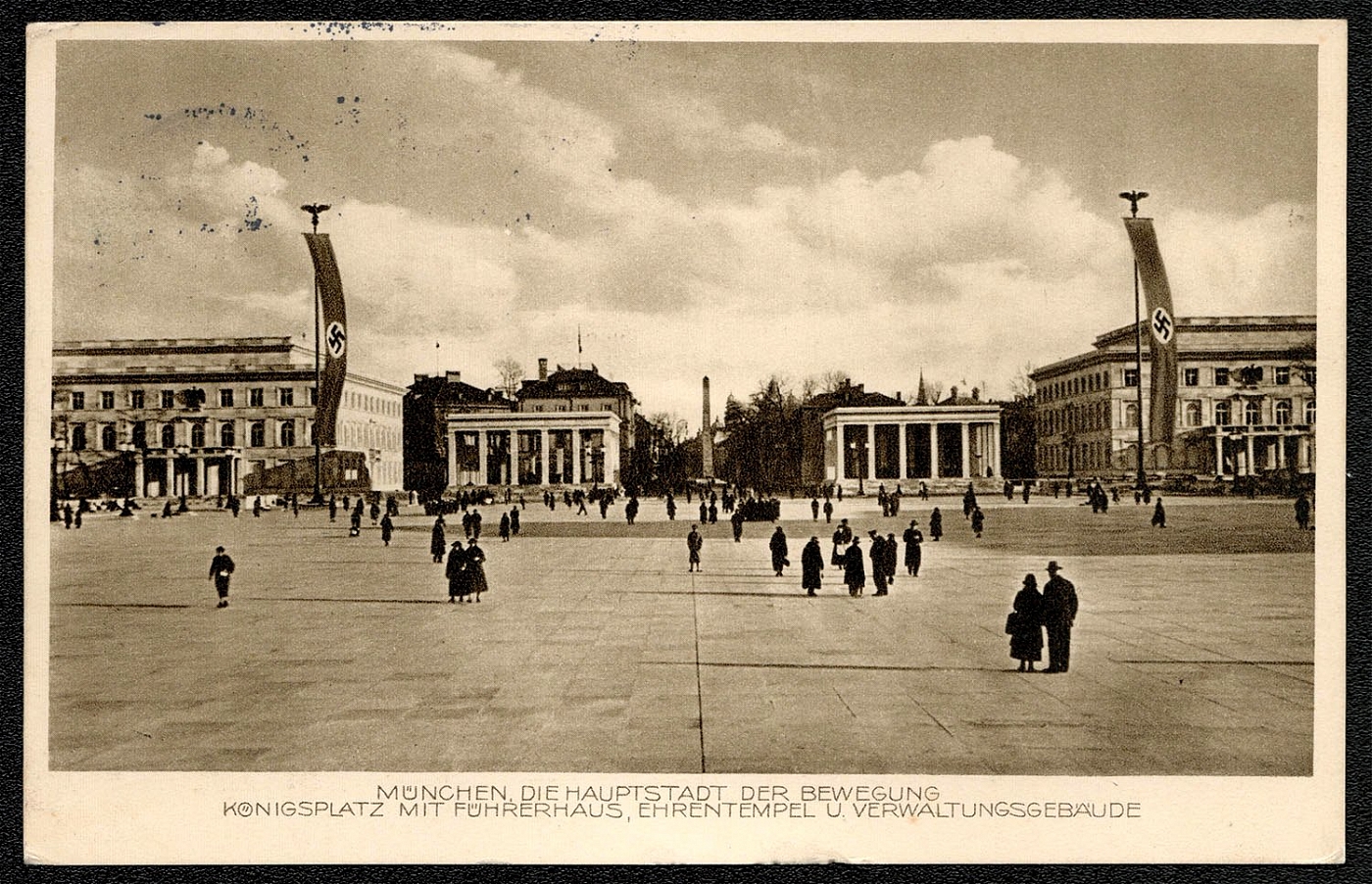
1937 Munich The Capital City of the Movement. Konigsplatz with Fiihrerhaus, Temple of Honor and Administration Building.
1937 Munich The Capital City of the Movement. Konigsplatz with Fiihrerhaus, Temple of Honor and Administration Building. Photocard Nr. 871 published by Carl Krueck, Miinchen. Franked with Sc 419 and posted 28 September 1937 in Miinchen.
Sold for:
$35
79
$14
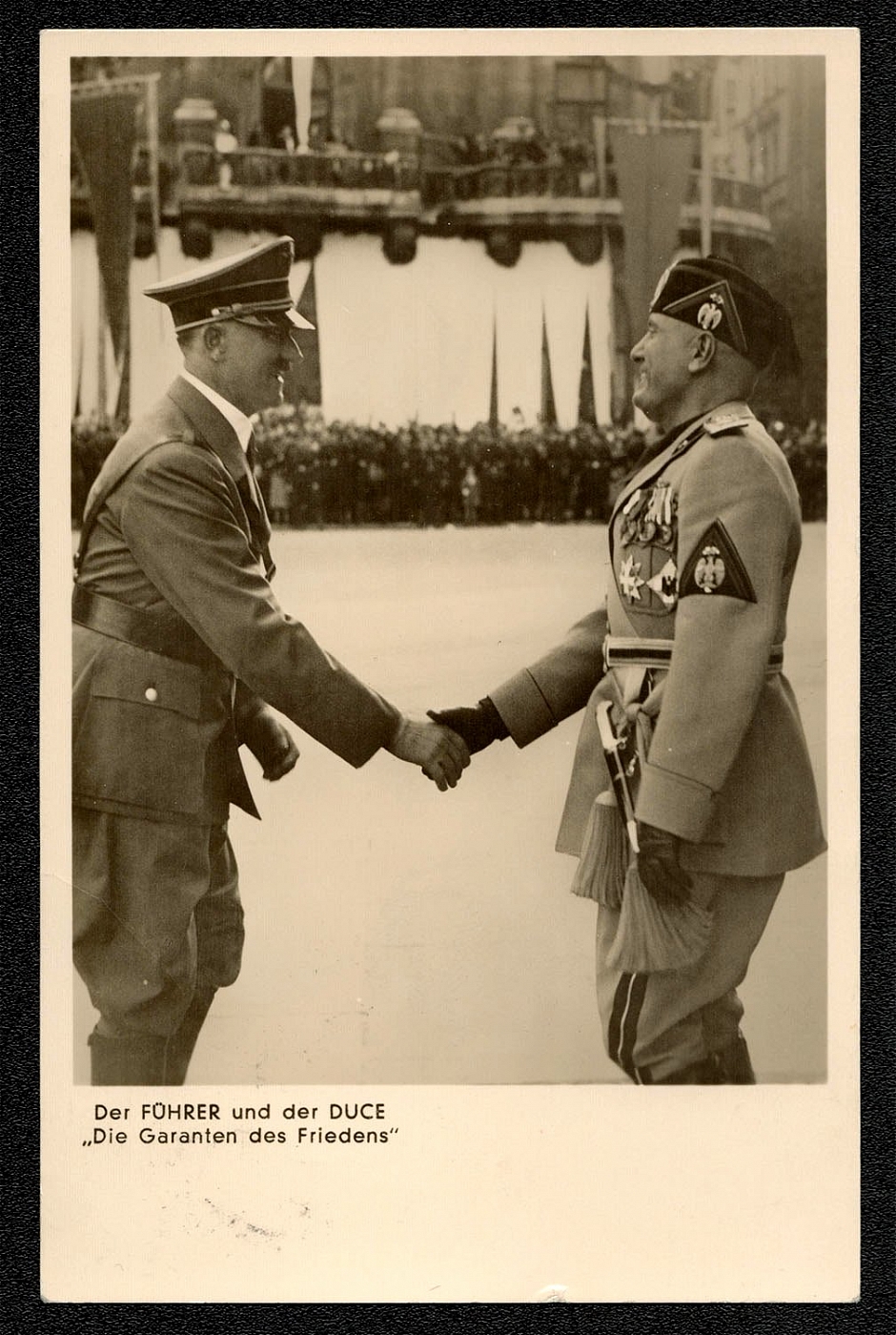
1937 The FUHRER and the DUCE “The Guarantors of Freedom”
1937 The FUHRER and the DUCE “The Guarantors of Freedom” Photocard franked with Sc 419 with Gefalligkeitsstempel (favor cancellation) dated 28 September 1937 commemorating Mussolini’s state visit. Posted in Berlin, Station “b.”
Sold for:
$14
80
$10
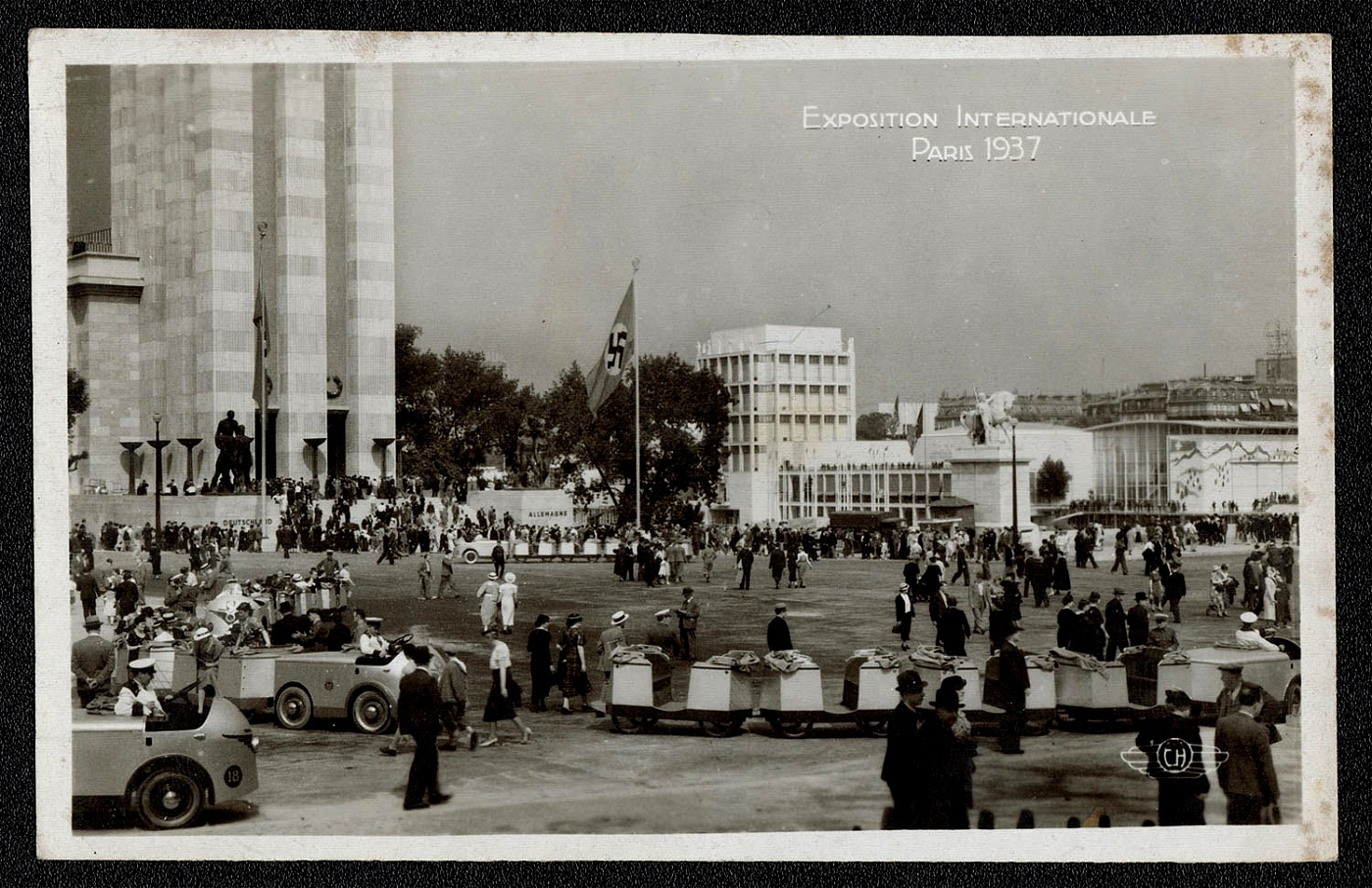
1937 International Exhibition in Paris GERMANY PAVILION
1937 International Exhibition Paris GERMANY PAVILION Photocard franked with Sc 290 sent from Paris to Austria on 20 October 1937. “Hitler abruptly threatened withdrawal from the Paris World’s Fair of 1937, although the invitation had already been accepted and the site for the German pavilion fixed. He strongly disliked all the sketches he was shown. The Ministry of Economics thereupon asked me for a design. The Soviet Russian and German pavilions were to be placed directly opposite one another on the fairgrounds. the French directors of the fair had deliberately arranged this confrontation. While looking over the site in Paris, I by chance stumbled into a room containing the secret sketch of the Soviet pavilion. A sculptured pair of figures thirty-three feet tall, on a high platform, were striding triumphantly toward the German pavilion.”
Sold for:
$10
81
-
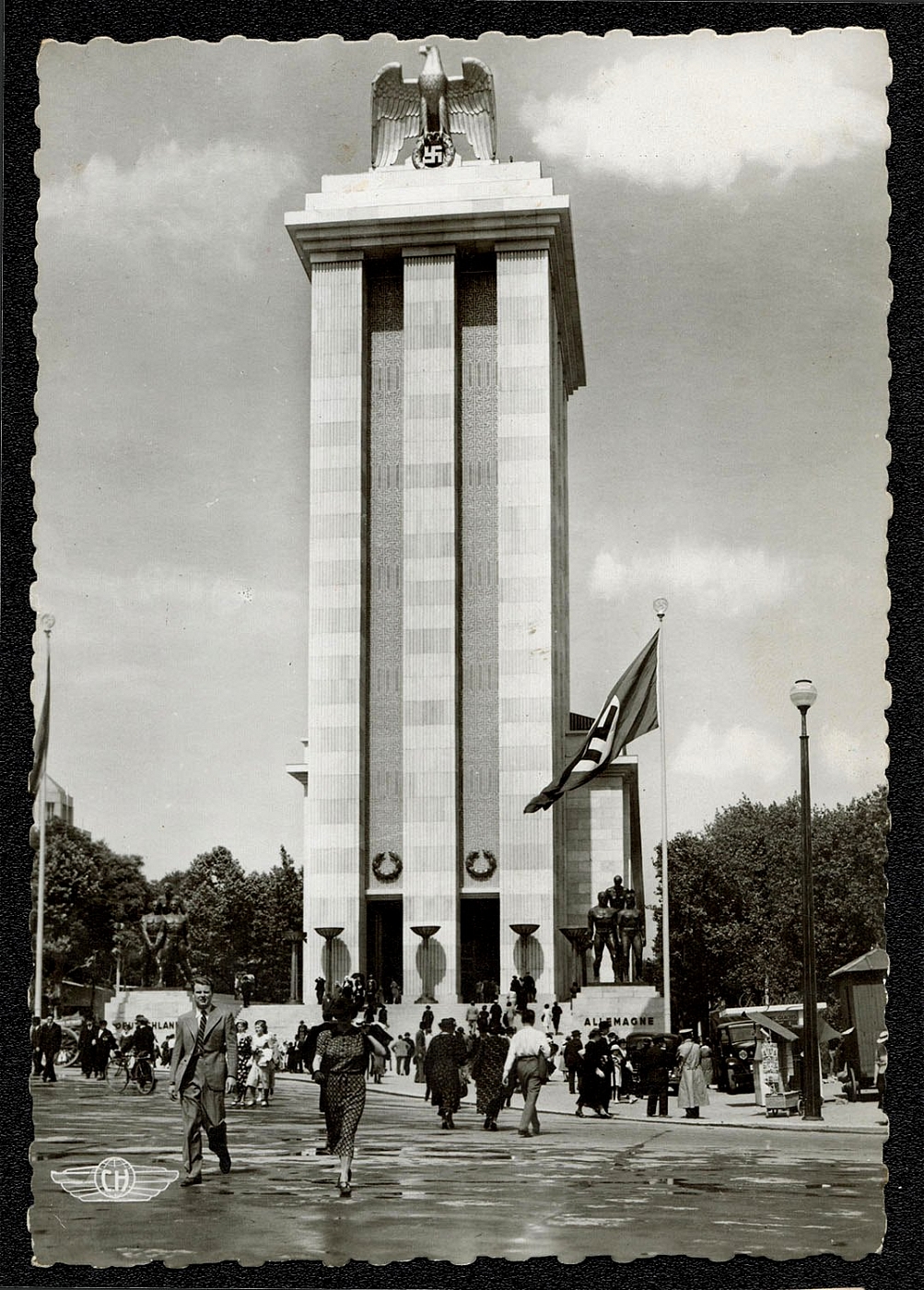
1937 International Exhibition in Paris GERMANY PAVILION Architect: M. Speer
An unmailed, unaddressed French photocard depicting the German Pavilion during the World’s Fair of 1937. The reverse contains a note from a German tourist (Heinz) telling his love (Else) how beautiful Paris is. “I therefore designed a cubic mass, also elevated on stout pillars, which seemed to be checking this onslaught, while from the cornice of my tower an eagle with the swastika in its claws looked down on the Russian sculptures. I received a gold medal for the building. so did my Soviet colleague.”
Unsold
82
-
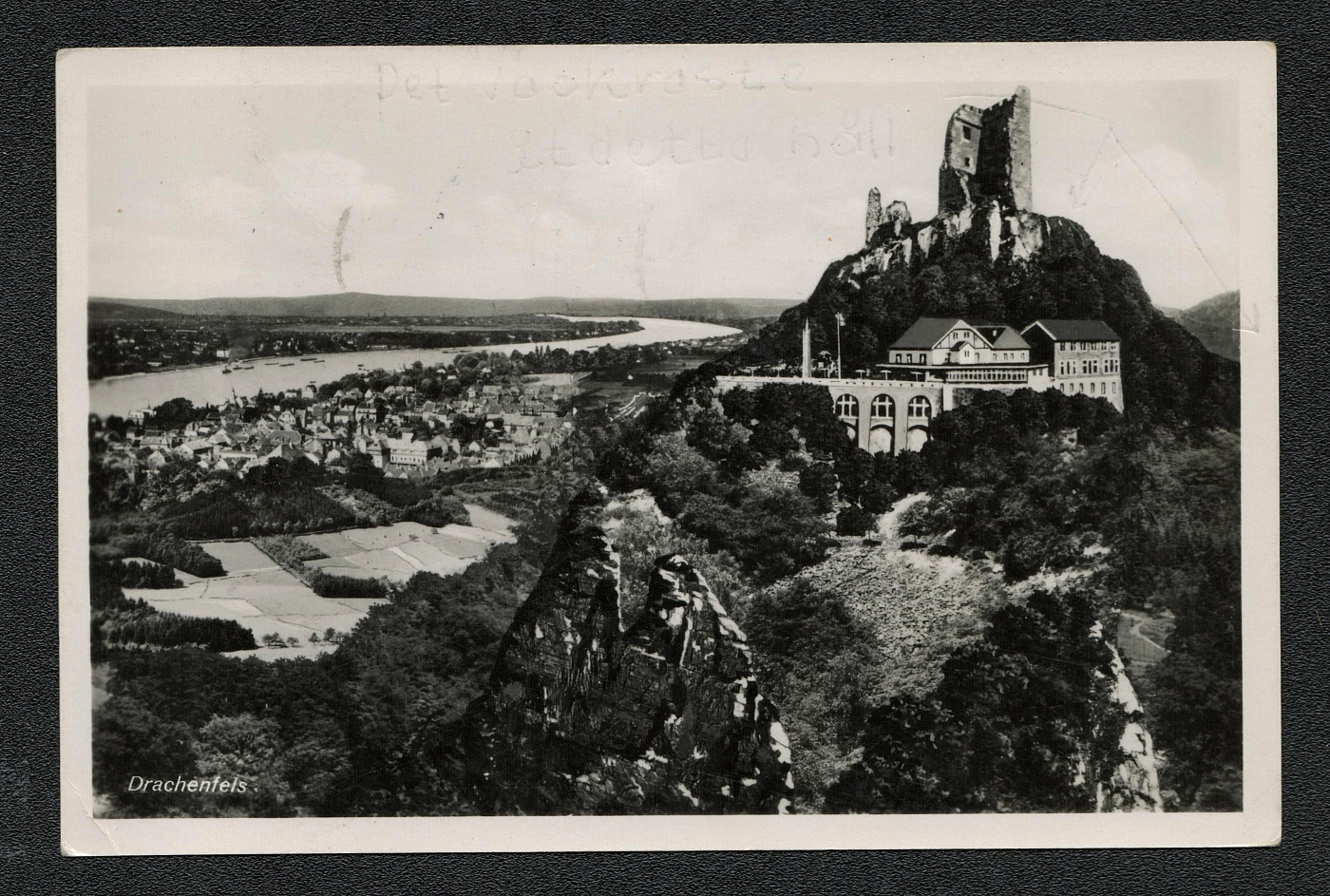
83
-
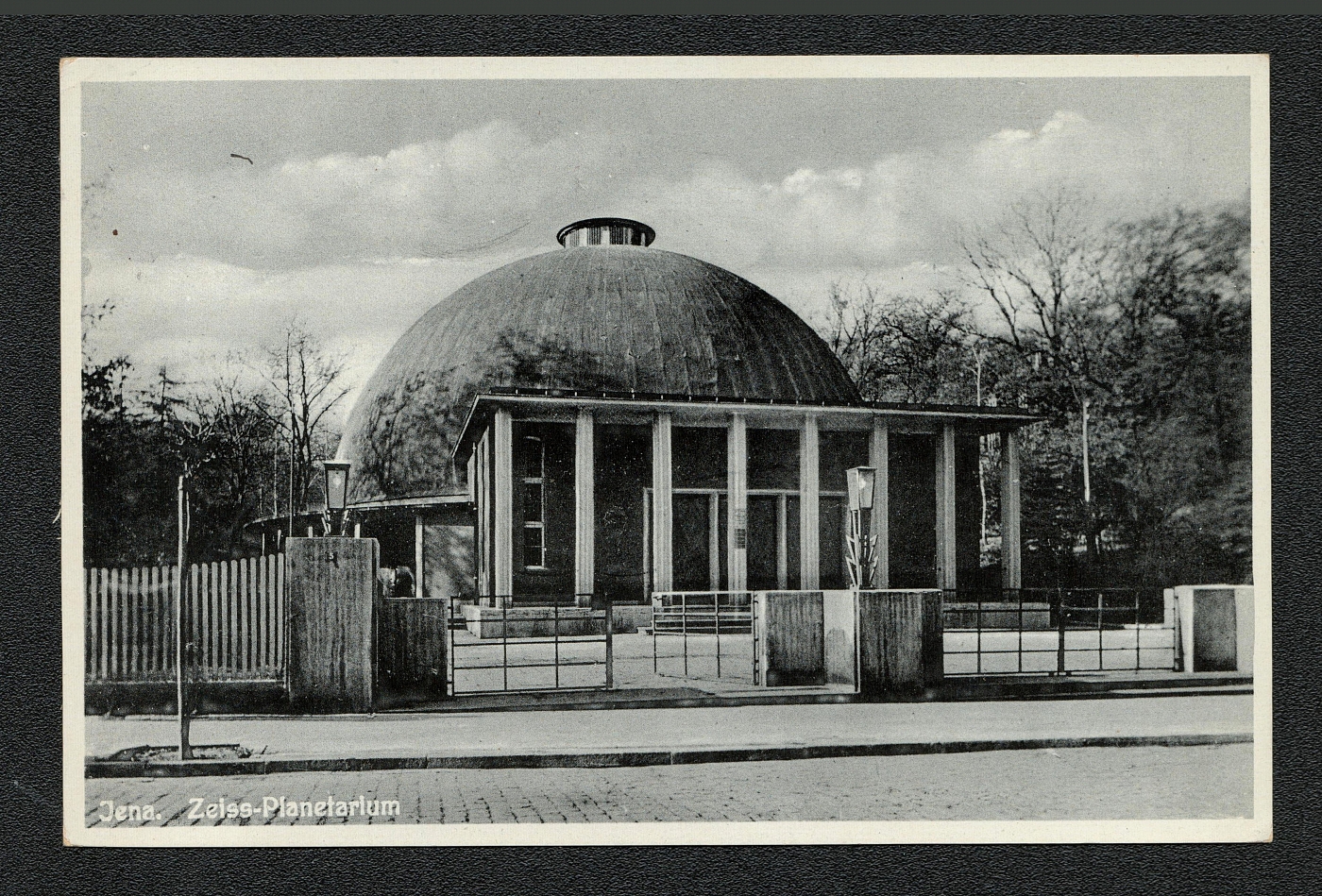
84
-
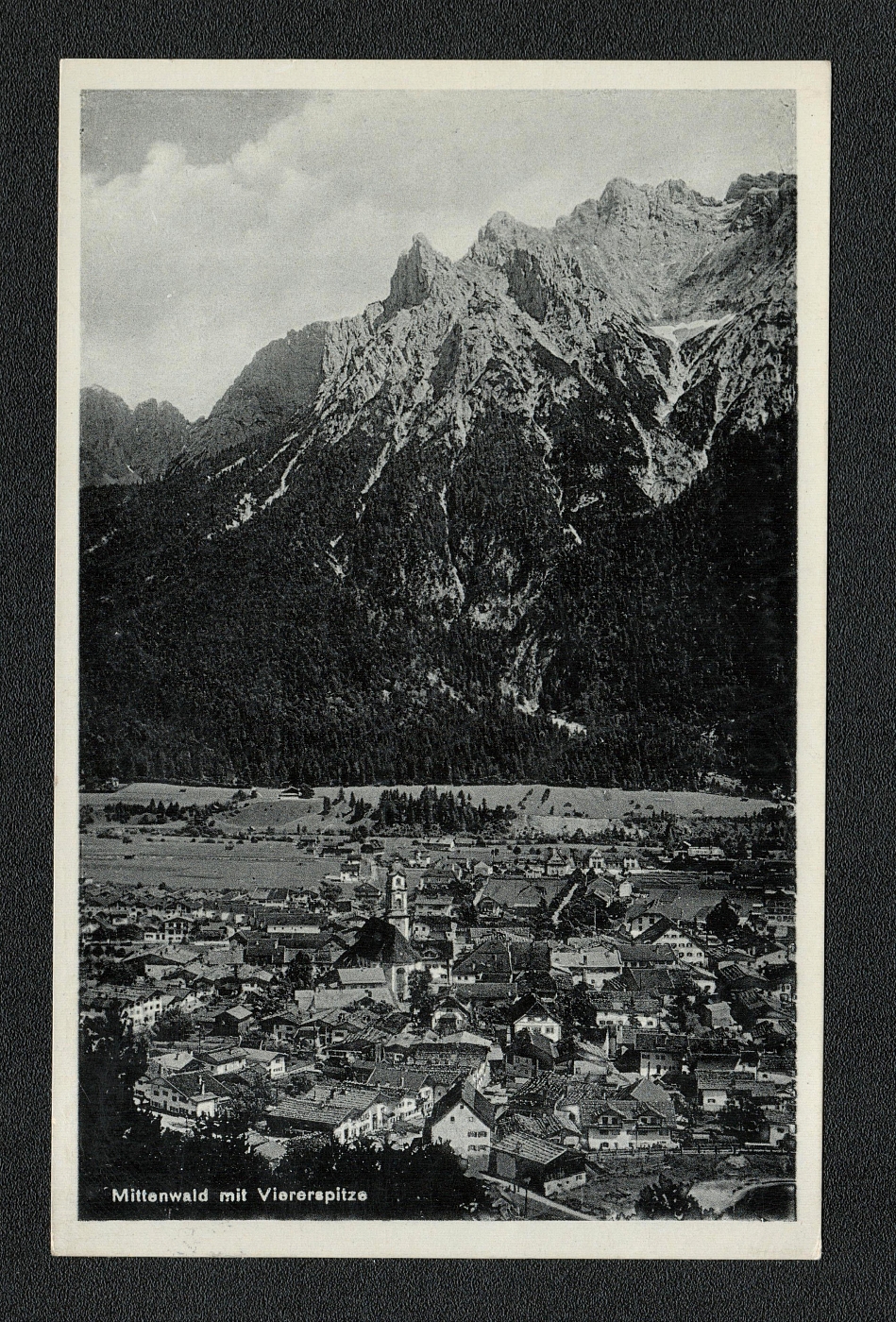
85
-
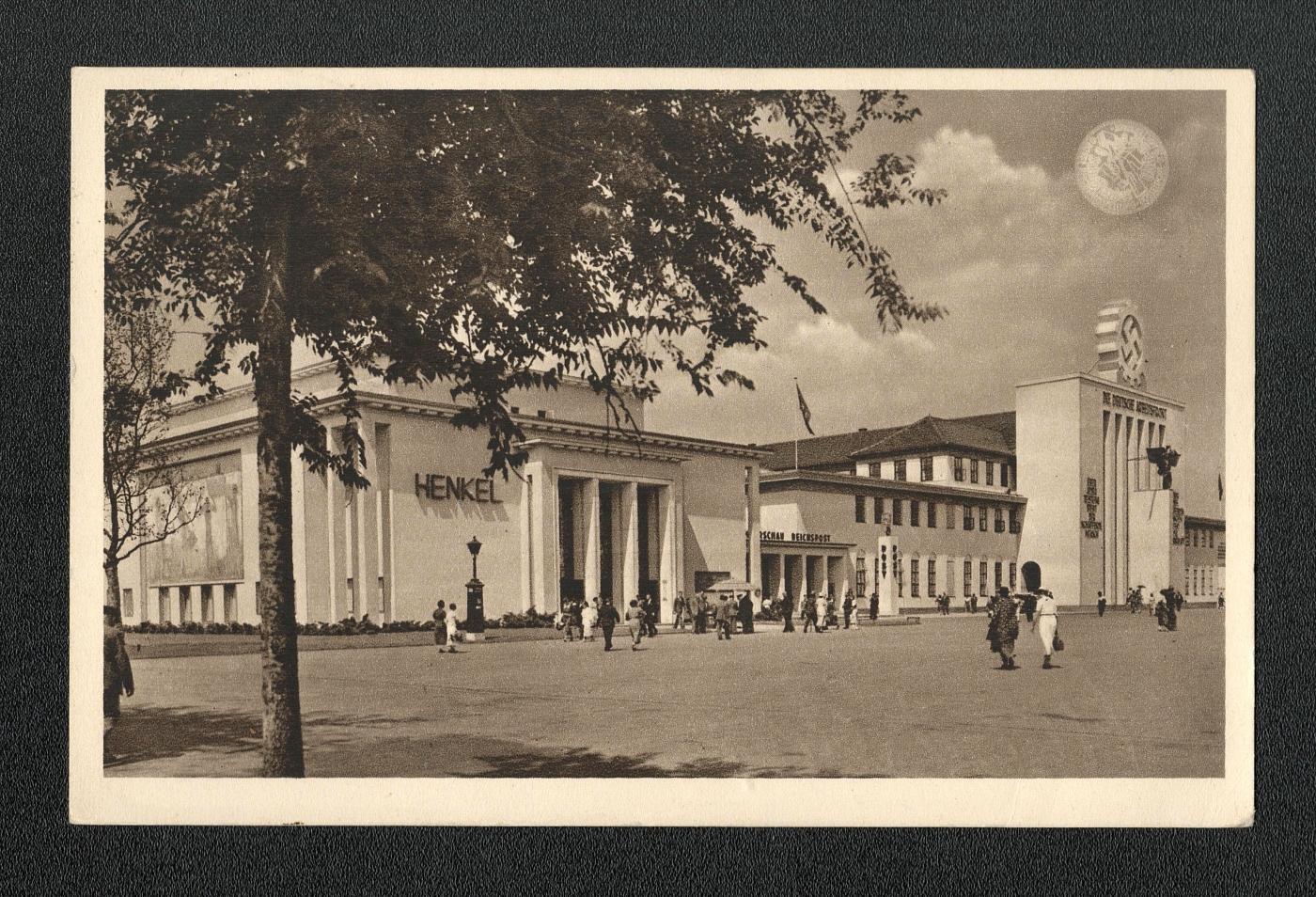
1937 The Reich's Exhibition of a Productive People
1937 The Reich's Exhibition of a Productive People
Unsold
86
-
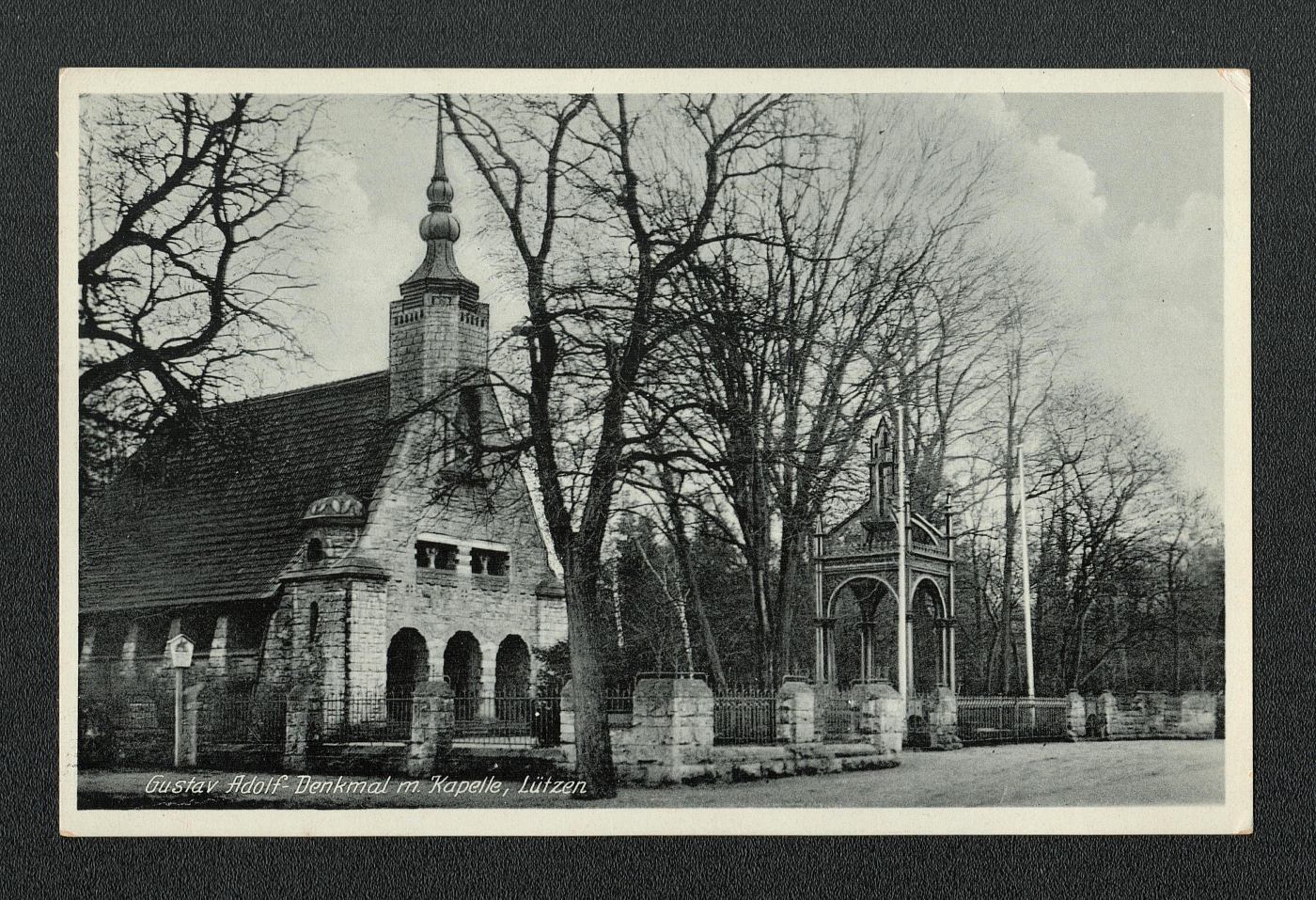
87
-
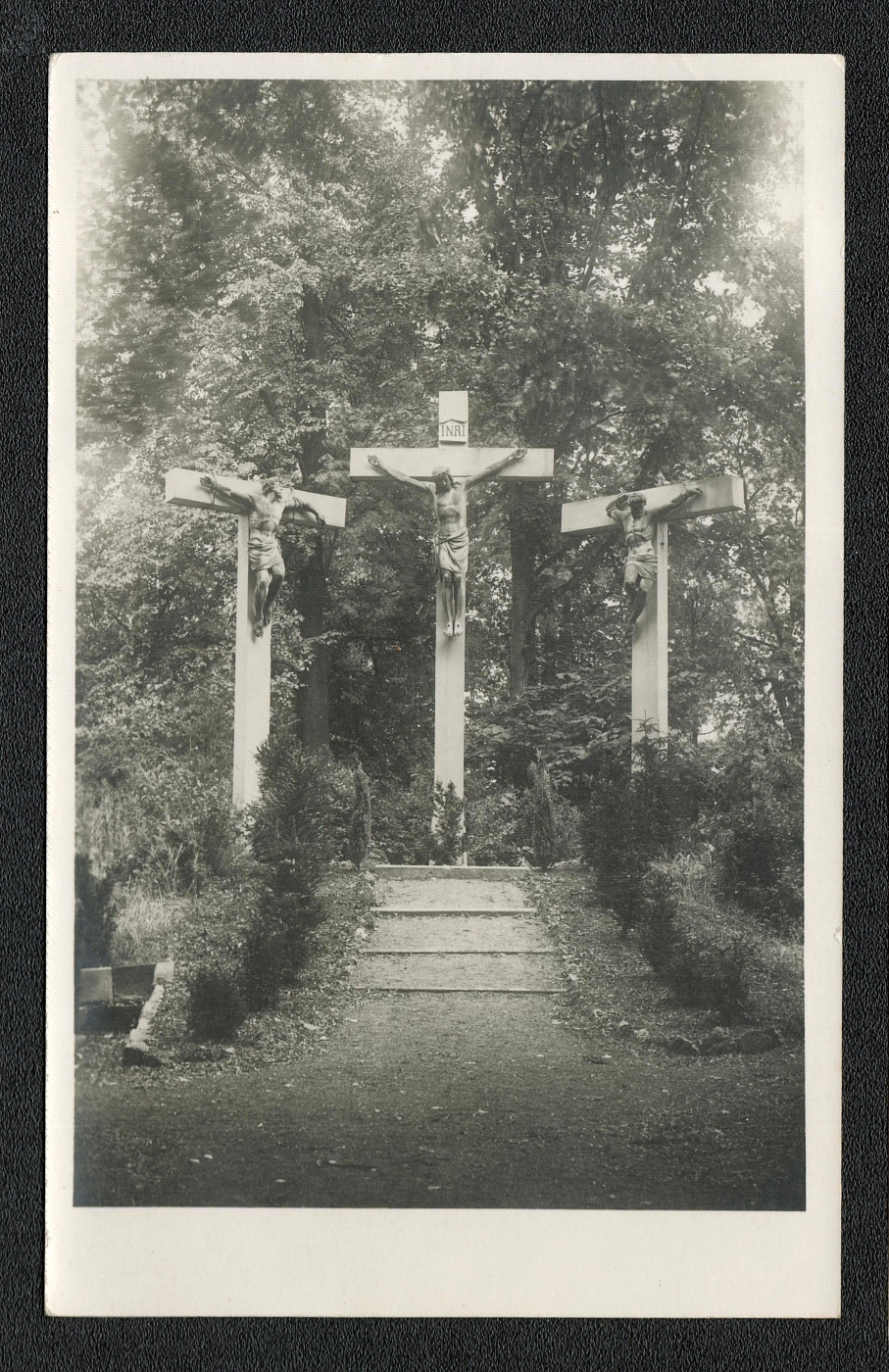
1937 Jesus Christ On Cross Postcard sent from Ilsenburg
1937 Jesus Christ On Cross Postcard sent from Ilsenburg
Unsold
88
$55

1938 Konrad Henlein and Adolf Hitler. Airmail GRAF ZEPPELIN Flight
1938 Konrad Henlein and Adolf Hitler. Airmail GRAF ZEPPELIN Flight
Sold for:
$55
89
$45
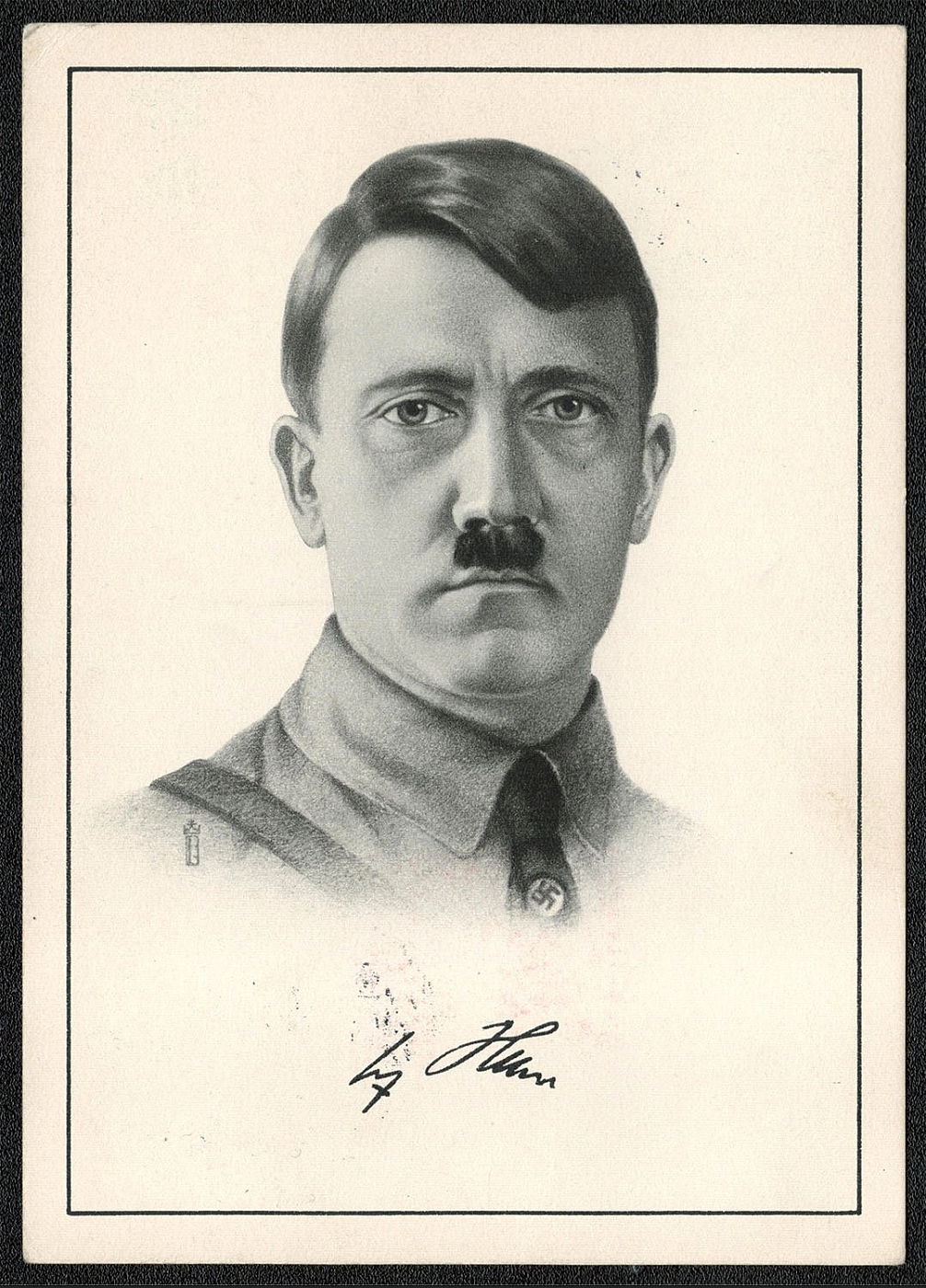
1938 The Führer and Reich Chancellor, Adolf Hitler special card for Hitler's 49th birthday
"1938 The Führer and Reich Chancellor, Adolf Hitler special card for Hitler's 49th birthday (Special post card published by J. Bettenhausen, Dresden , in commemoration of Hitler’s 49""' birthday with facsimile signature.) Franked with Scott Bl 18, cancelled in Linz on 20 April 1938 and Scott 484 cancelled in Wien on 20 April 1938, Hitler’s 49""' birthday."
Sold for:
$45
90
$25
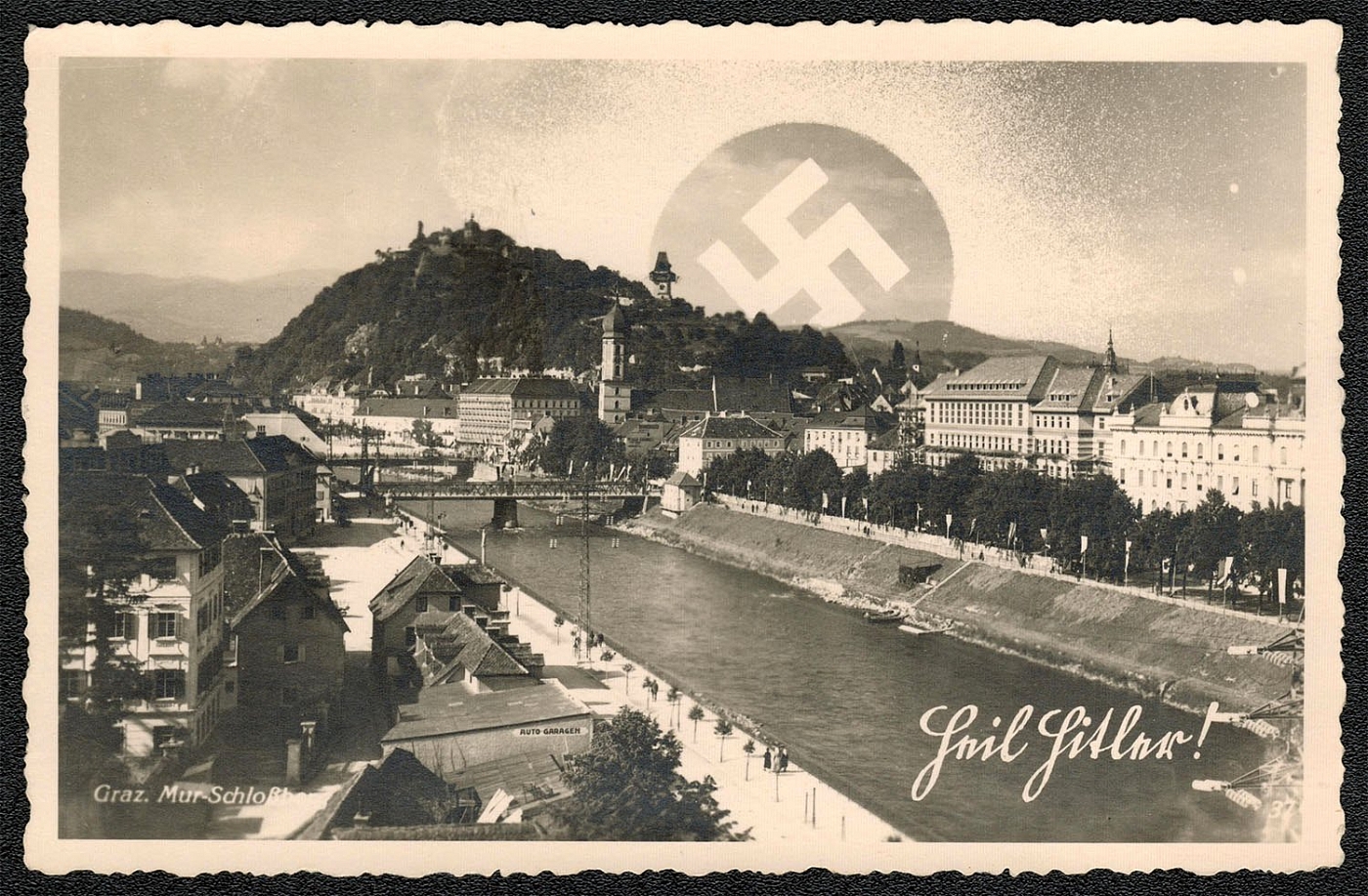
1938 Graz, Mur Schlossberg Heil Hitler! Special Postmark was used only on 20 April 1938,
"The special postmark was used only on 20 April 1938, the actual date of Hitler’s birthday. Depicted is Graz Castle. The photocard is franked with Scott Bl 18 and cancelled in Graz, 20 April 1938. Graz, the capital of Styria, Austria, had a population of 152,706 in 1938. It is a picturesque old town built on both sides of the Mur River between the Styrian Alps and a wide, fertile valley known as the Grazerfeld. In the 9""1 century there was fortress on the Schlossberg, a rocky cone (1,552 feet) that dominates the city. The town contains several old buildings—two Gothic churches, one built in 1283. the Late Gothic cathedral (1462). the ancient Castle of the Styrian Dukes. the Armory (1643-45) with a unique historical collection of armor and weapons. the Town Hall (1888-93). the Landhaus, an 11""' century castle with 15""' century additions, now used as government offices. Karl-Franzens-Universitdt Graz founded in 1585. Graz Technical University (1811). and the Steiermdkisches Landesmuseum Joanneum founded in 1811 by the Archduke John and containing historical and art collections. The most important industries in 1938 included the manufacture of machines, steel goods, rails, railway carriages, sugar, wine, perfume, stearine candles, and soap."
Sold for:
$25
91
$16
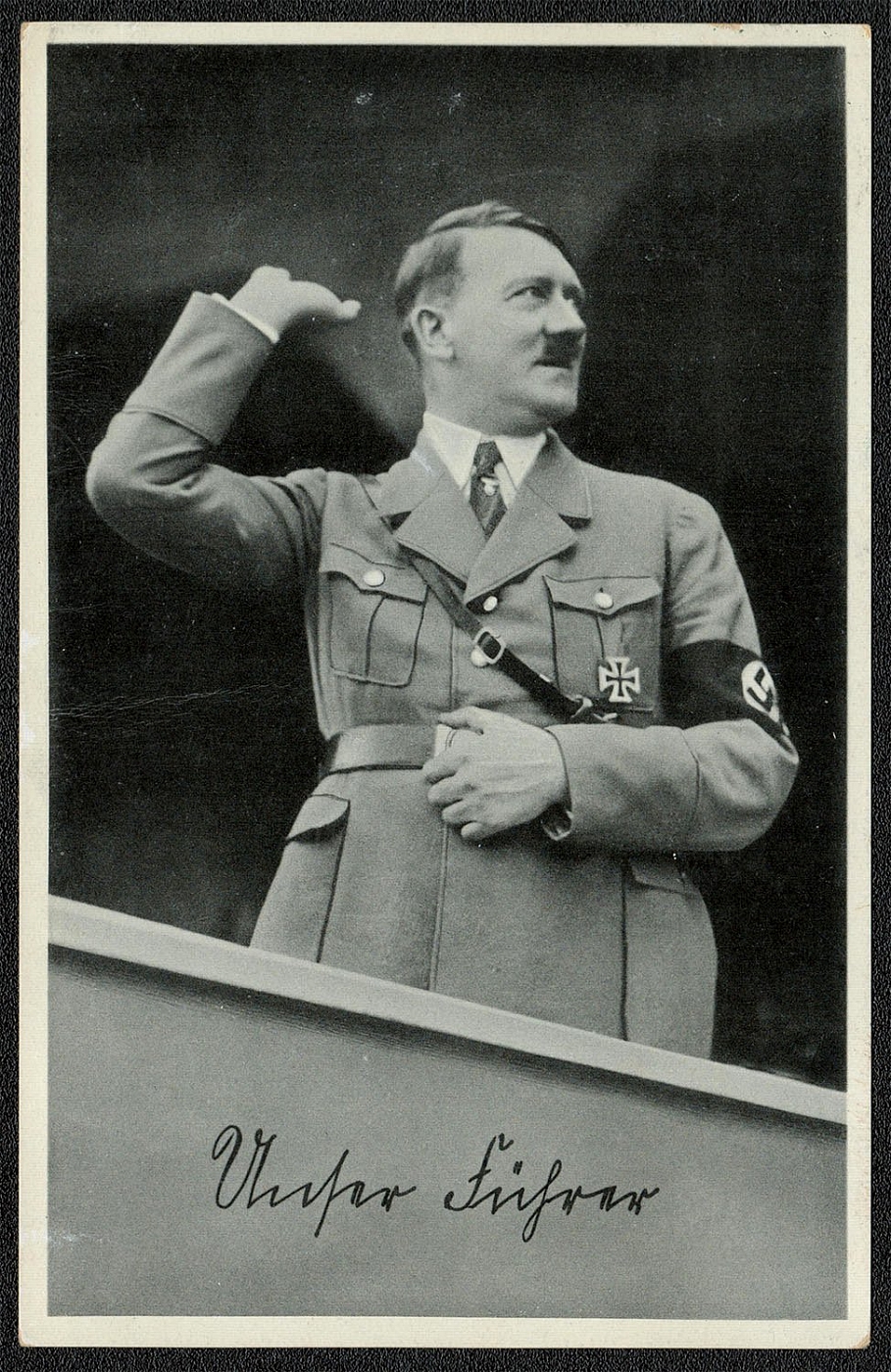
1938 Postcard privately printed “Our Fiihrer” with Cancellation Commemorating the NSDAP
Photo card privately printed and published in 1938 by the Berlin firm of Driesen-Verlag. The photo is a one of a series published in the late 1930s by a number of private companies. Apparently it was in the public domain because no photo credit is given. Hannover, 11 June 1938 Scott No. 403 tied to card with cancellation commemorating the NSDAP Gautag or Region Days. Gau is an old German term for a particular (tribal) region. Although customary even before 1933, after that date the NSDAP officially used the term Gau to designate its highest “sovereign territory” (Hoheitsgebiet) below the Reich level. A Gauleiter directed a Gau.
Sold for:
$16
92
-
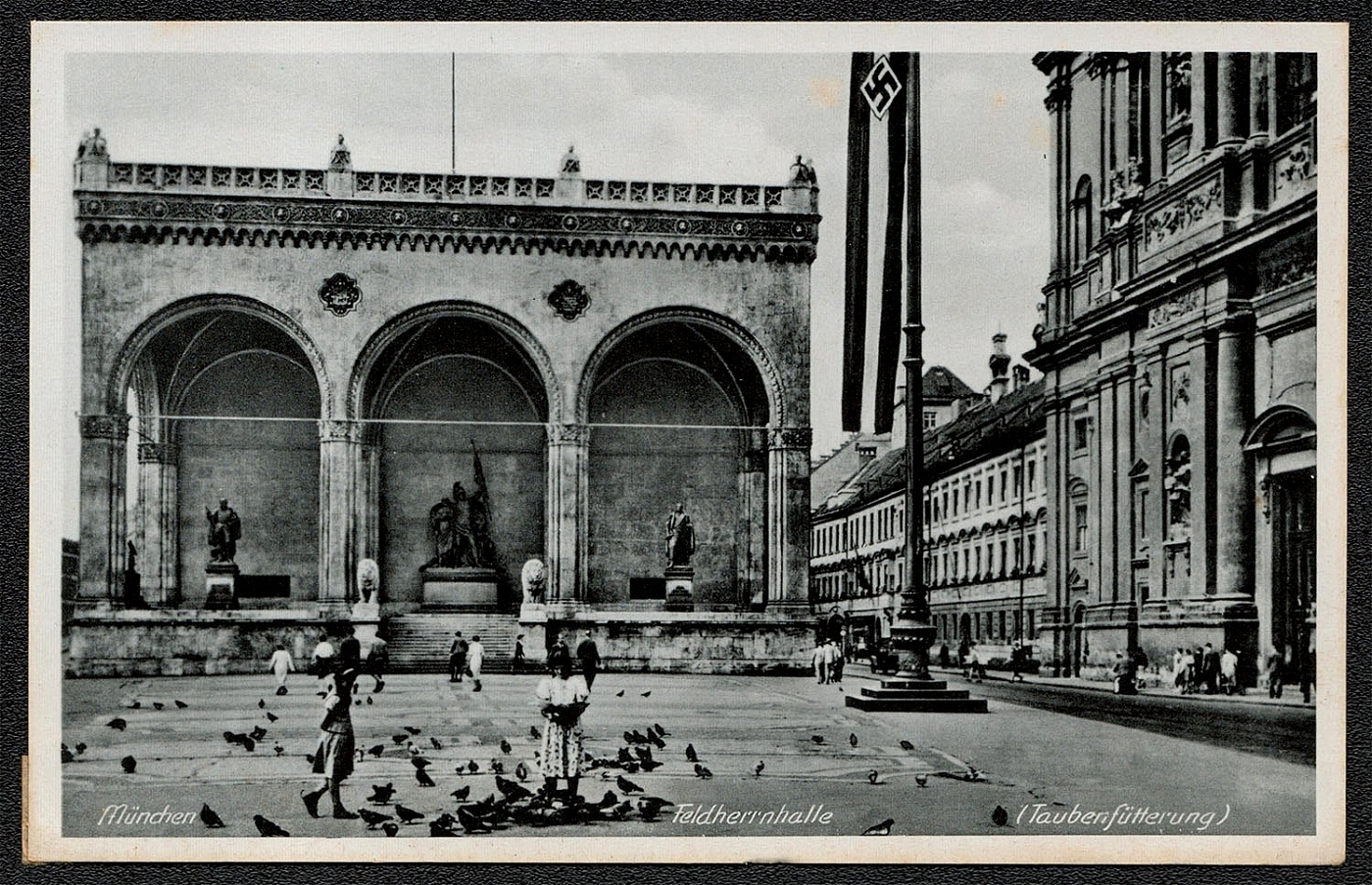
1938 Munich - The Feldhermhalle (Pigeon feeding)
1938 Munich - The Feldhermhalle (Pigeon feeding) Munchen’s Feldhermhalle was designed after the Loggia dei Lanzi in Florence, Italy and erected in 1841-44 by Friedrich Gartner. It contains the Bavarian Military Monument by F. von Miller (1892) and statues of Field Marshals Tilly and von Wrede by Schwanthaler. The inscription “Lord deliver usl” was placed above the monument in 1924, and refers to German territory lost or occupied since World War I. The square in front of the hall is still a favorite rendezvous on Sunday afternoons, but in the Third Reich, it was most notable as the site of Hitler’s ill-fated Putsch of 9 November 1923.
Unsold
93
$30
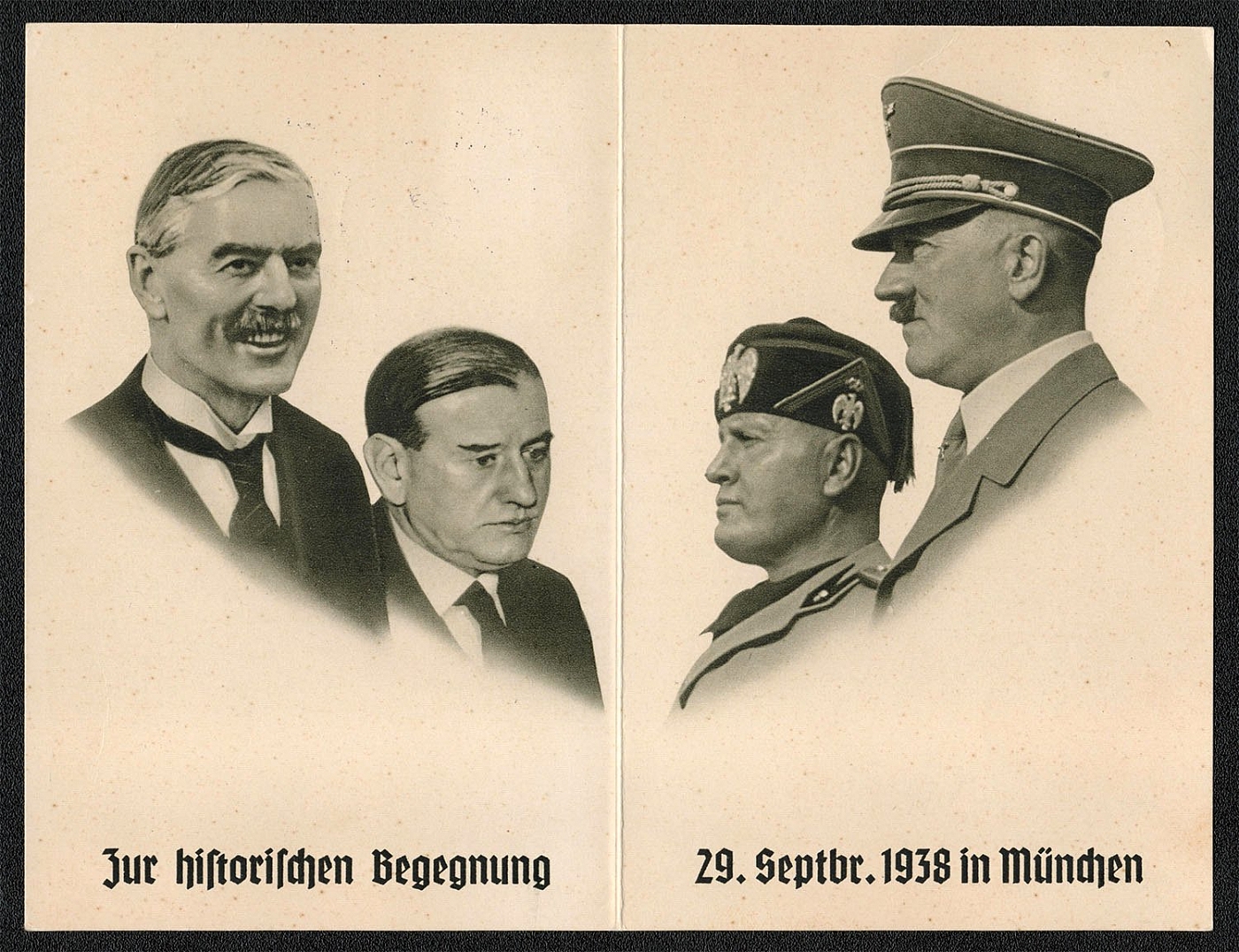
1938 To the Historical Meeting 29 September 1938 in Munchen Two-part separable souvenir card
Two-part separable souvenir card commemorating the Munchen Pact portraying Chamberlain, Daladier, Mussolini and Hitler published by O. Struck of Berlin-Lichterfelde. On 28 September 1938 William L. Shirer wrote in his Berlin Diary . . . “There is to be no war! Hitler has invited Mussolini, Chamberlain, and Daladier to meet him in Munich tomorrow. The latter three will rescue Hitler from his limb and he will get his Sudetenland without war, if a couple of days later than he boasted. The people in the streets greatly relieved, and if I judge correctly, the people in the Wilhelmstrasse and the Bendlerstrasse (War Department) also.”
Sold for:
$30
94
-
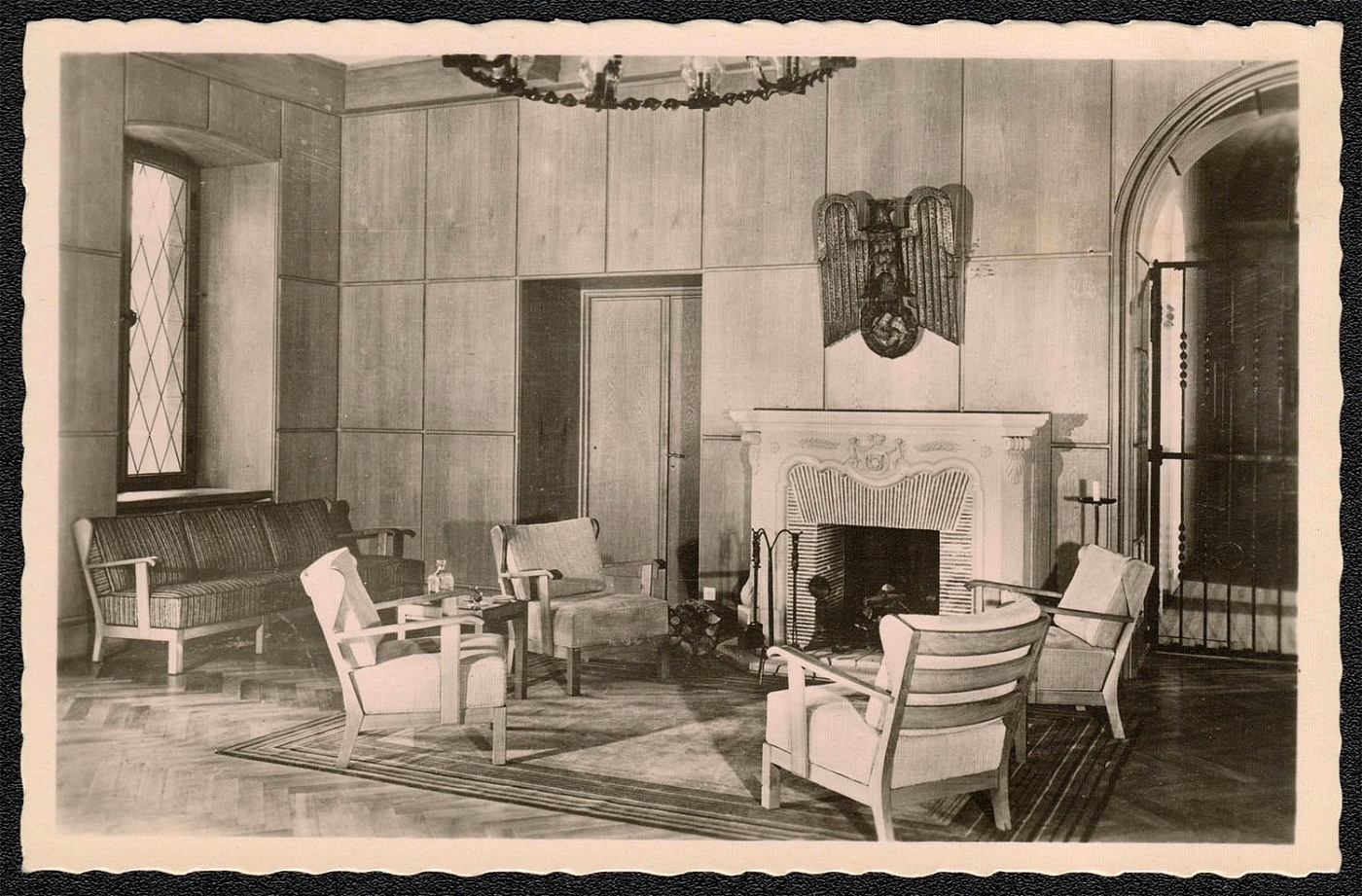
1938 The NSLB Donndorf-Bayreuth Reichs School Hall with Chimney
The Nationalsozialistischer Lehrerbund (NSLB) or National Socialist Teachers’ League, a member association of the NSDAP, was founded in 1929 by Hans Scheinm with headquarters in Bayreuth (the “House of German Education”). After the Seizure of Power, the NSLB had the special assignment of “aligning” all teachers in terms of the NS worldview. It was organized into 10 divisions, of which the most important was the division for education and instruction, with seven specialty groups (Fachschafteri) for institutions from universities to special schools. After the death of its founder, Fritz Wachtler assumed the position of Reichswalter (Reich Administrator) on 5 December 1935. On 27 October 1938, Wachtler dedicated the league’s own Reichsschule in Bayreuth. Its purpose was the training of functionaries, who were responsible for ideological faithfulness on a regional level, aided by courses, leisure activities, teachers’ camps, and similar devices.
Unsold
95
-
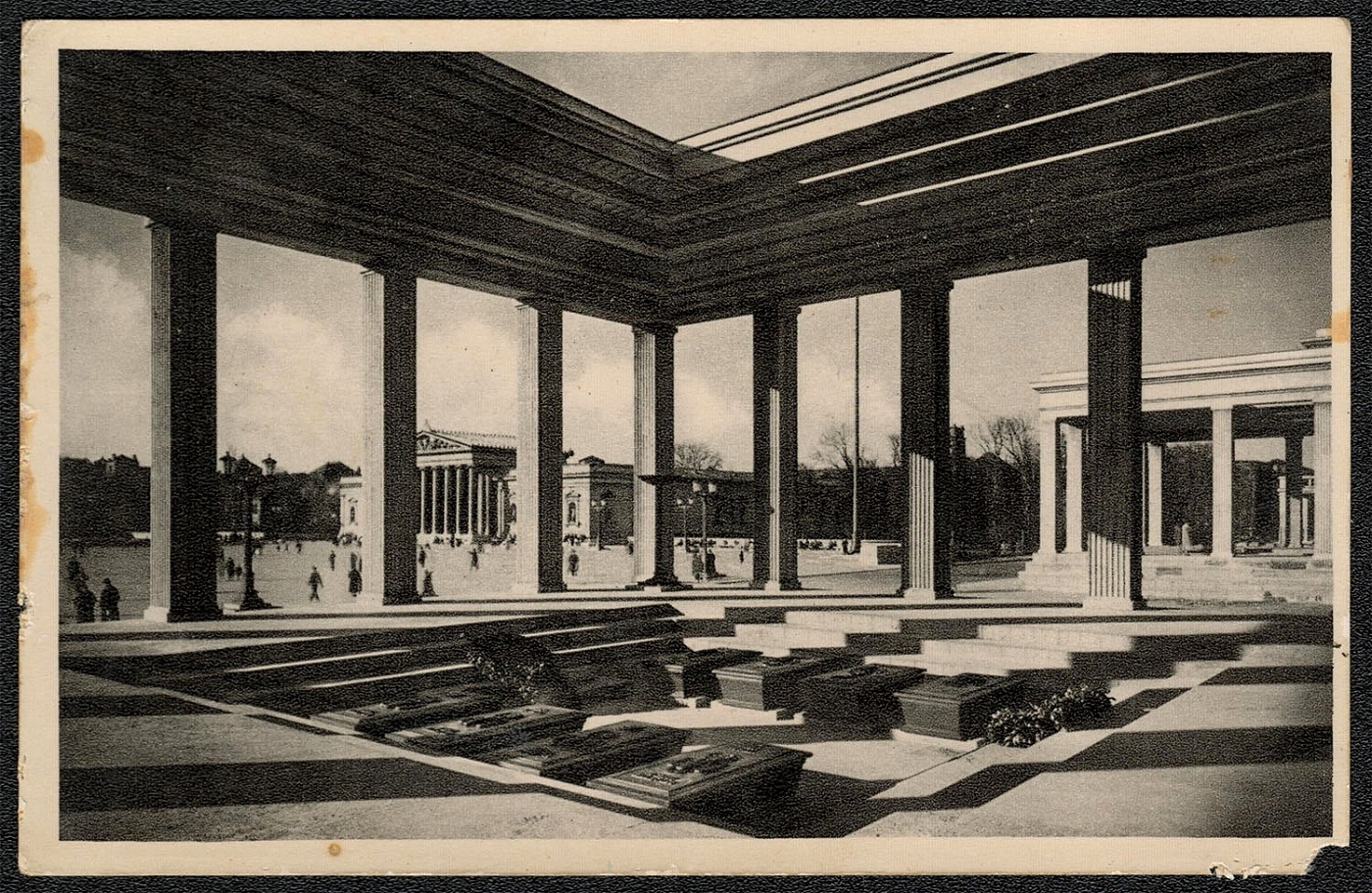
1938 Munich - The Temple of Honor - The Eternal Watch
1938 Munich - The Temple of Honor - The Eternal Watch The Ehrentempel was the memorial for the sixteen NSDAP members who were killed in Hitler’s failed Putsch in Miinchen on 9 November 1923.
Unsold
96
-
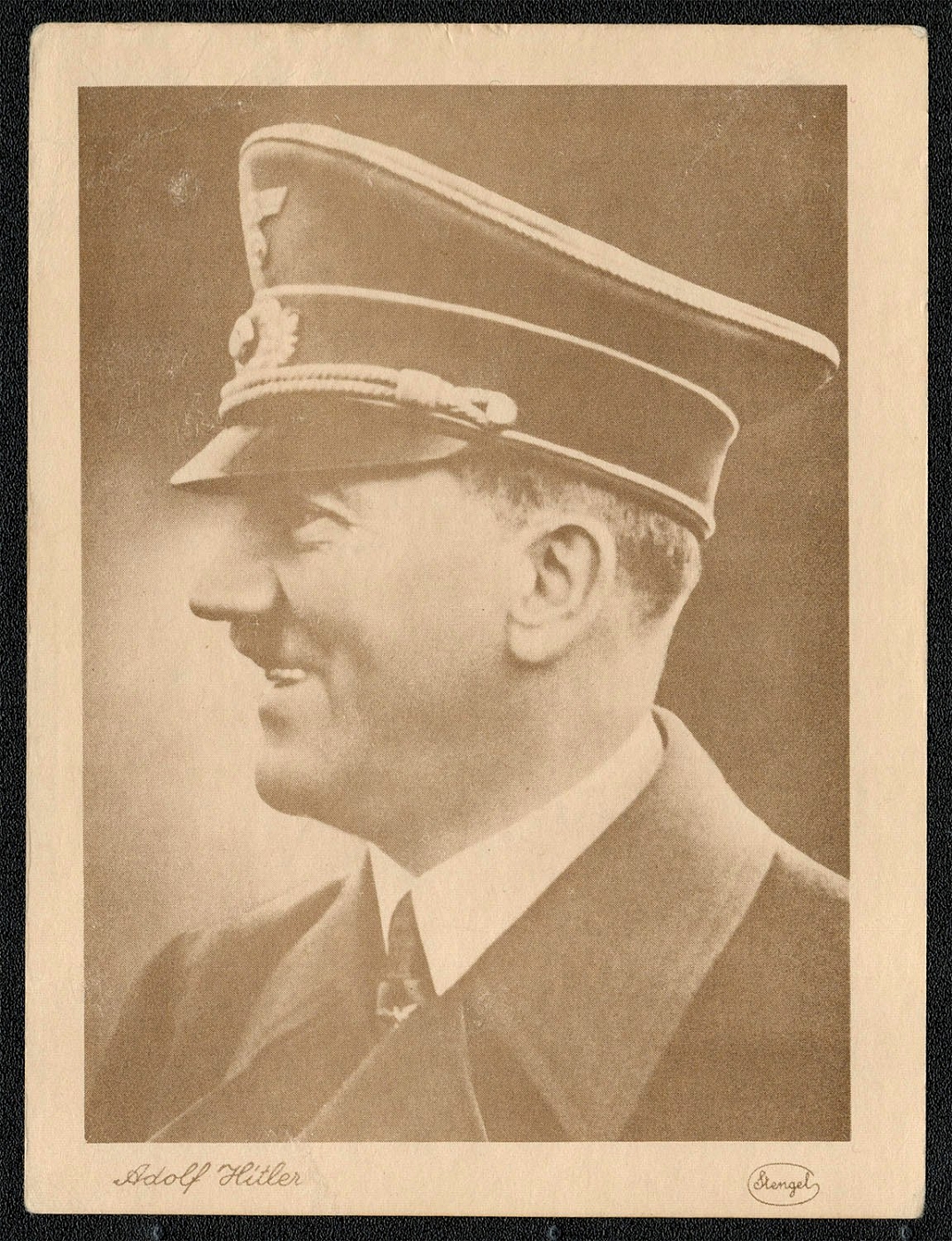
97
$20
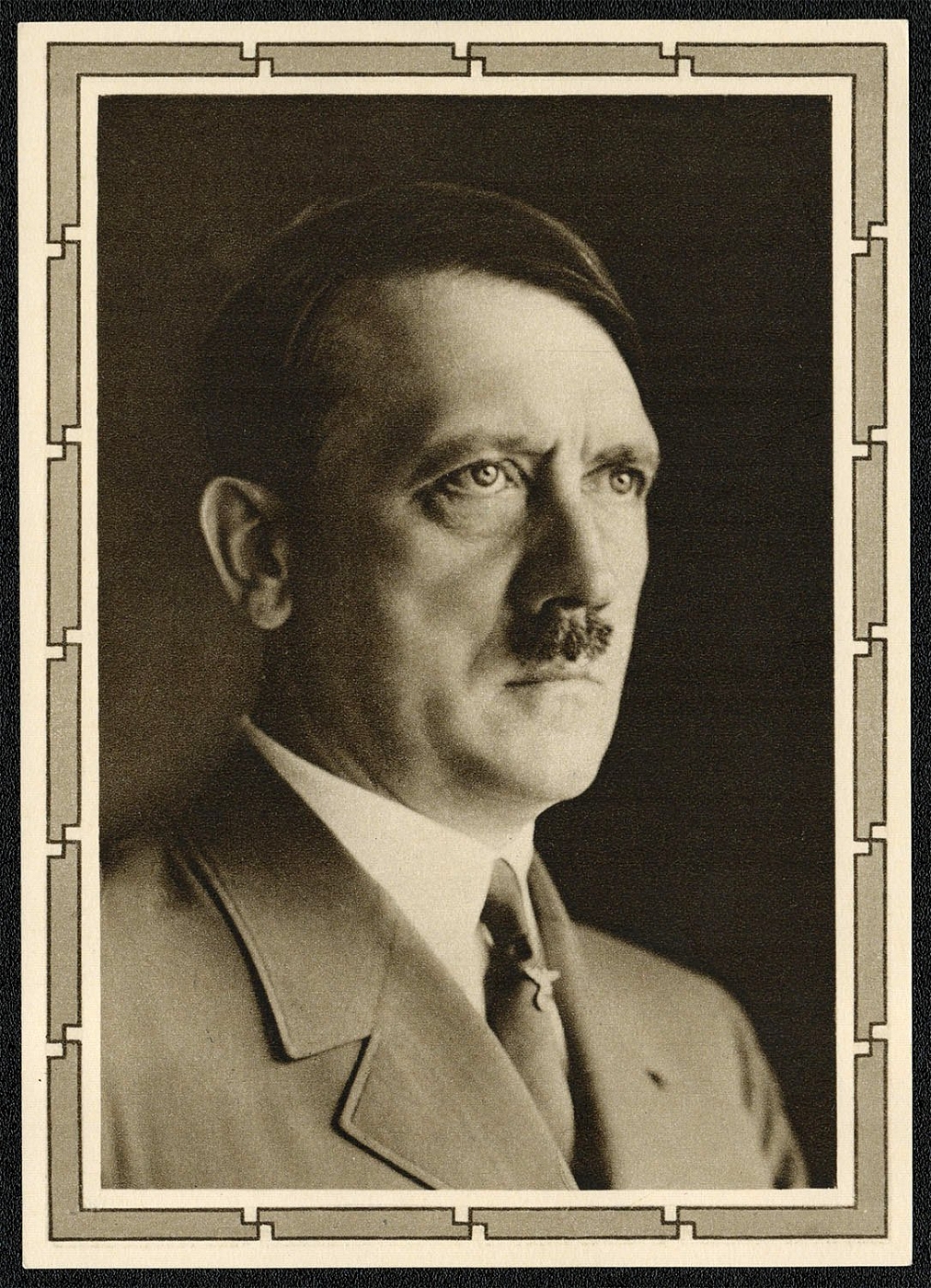
1939 Special Postcard issued in commemoration of Hitler’s 50th birthday (1)
1939 Special Postcard issued in commemoration of Hitler’s 50th birthday Michel P 278/01 with Special Cancellation 20 April 1939 Braunau 50. Geburtstag des Fiihrers 1889-1939 Four of this series of five postal cards issued for Hitler’s birthday were originally printed with the word “Antwort” (Response) under Postkarte. It was an error, and a geometric decoration was overprinted prior to issuance.
Sold for:
$20
98
$45
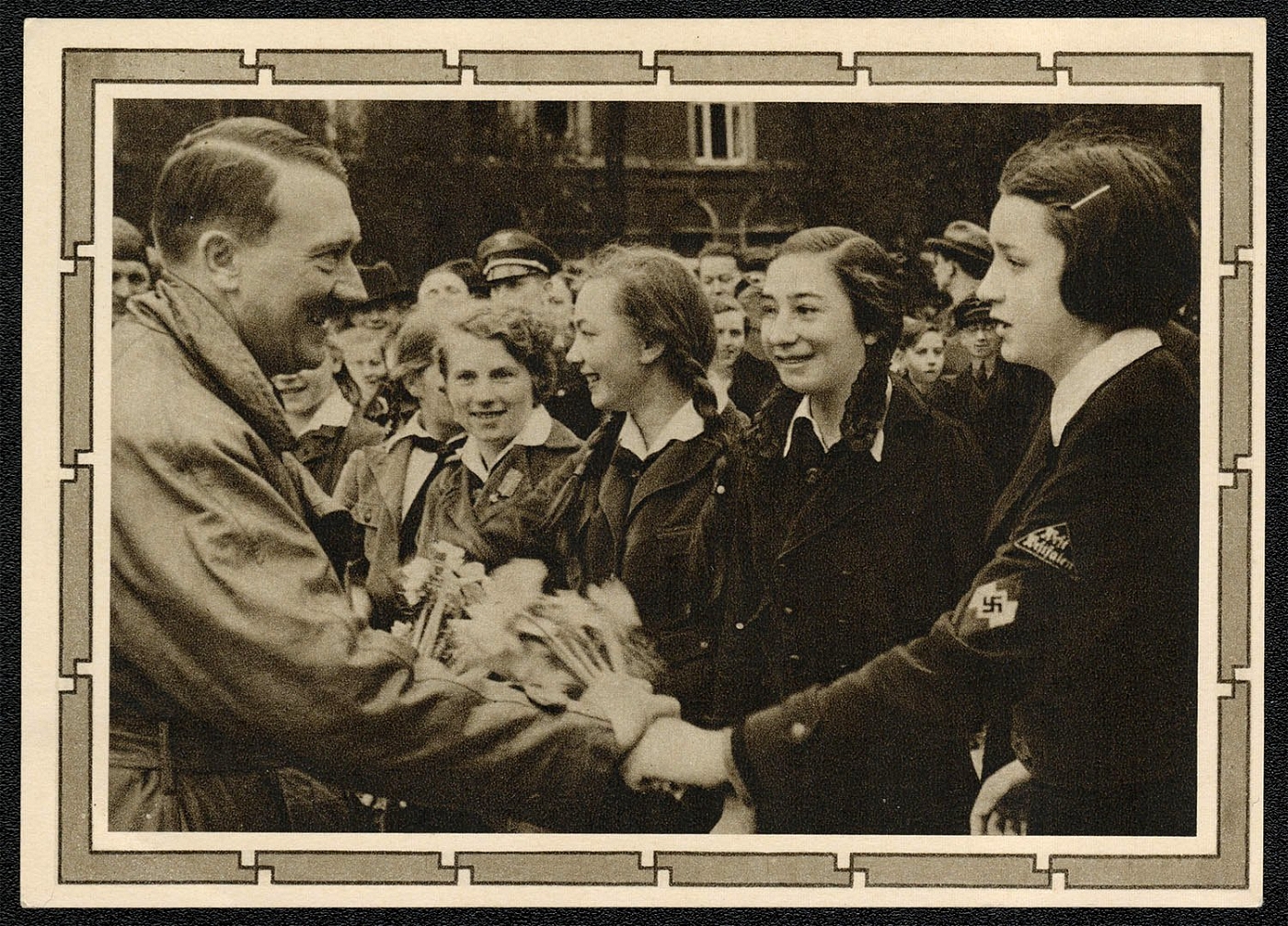
1939 Special Postcard issued in commemoration of Hitler’s 50th birthday (2)
1939 Special Postcard issued in commemoration of Hitler’s 50th birthday Michel P 278/03 1939, 13. April. Sonderkarte zum 50 Geburtstag Hitlers.
Sold for:
$45
99
-
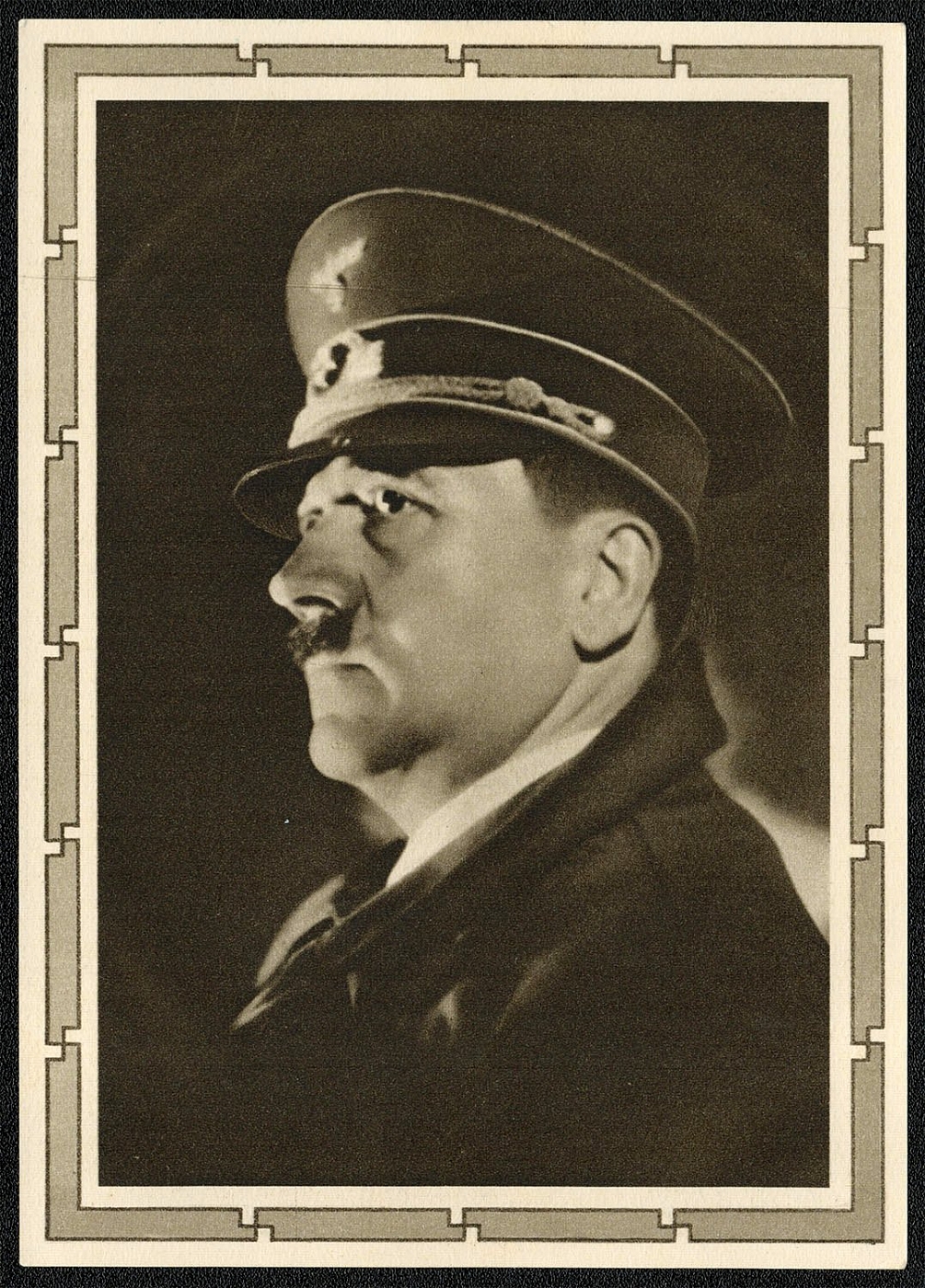
1939 Special Postcard issued in commemoration of Hitler’s 50th birthday (3)
1939 Special Postcard issued in commemoration of Hitler’s 50th birthday Michel P 278/02 with Special Cancellation 20 April 1939 50. Geburtstag des Fiihrers Wien, Deutsch die Ostmark The Leader’s Fiftieth Birthday Vienna, “Austria is German.”
Unsold
100
$20
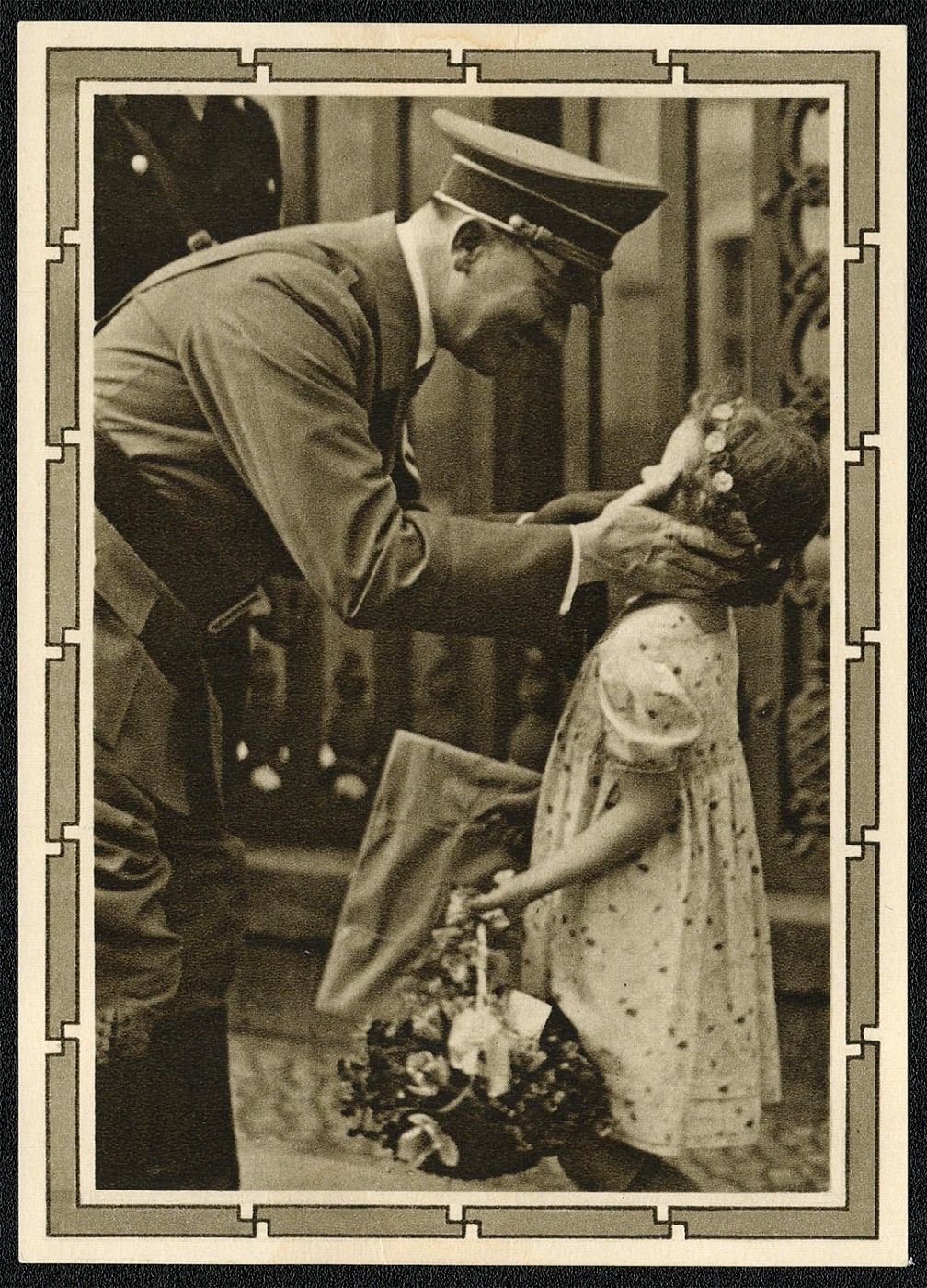
1939 Special Postcard issued in commemoration of Hitler’s 50th birthday (4)
1939 Special Postcard issued in commemoration of Hitler’s 50th birthday Michel P 278/05 with Special Cancellation 20 April 1939 50. Geburtstag des Fiihrers Miinchen, Hauptstadt der Bewegung The Leader’s Fiftieth Birthday Munich, “Capital City of the Movement.”
Sold for:
$20
Lot Number
Price
101
$16
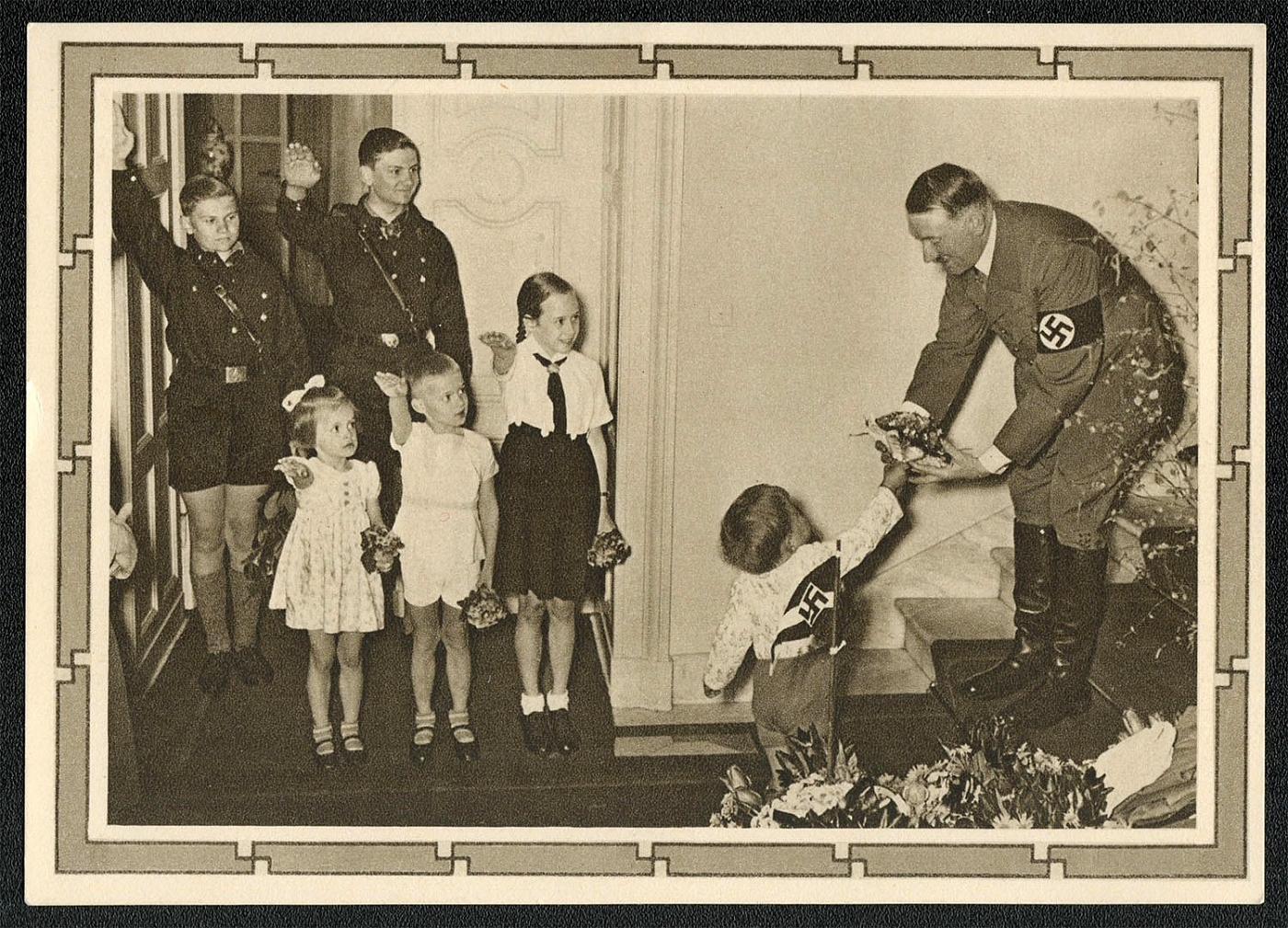
1939 Special Postcard issued in commemoration of Hitler’s 50th birthday (5)
"1939 Special Postcard issued in commemoration of Hitler’s 50th birthday Michel P 278/04 with Sonderstempel in commemoration of Hitler’s 50""' Birthday. Posted 20 April 1939 in Memel. (Although the “Antwort” error under Postkarte has been eliminated, the decoration remains.) Before World War I, Memelland, an area on the Baltic Sea located to the north of the Memel River belonged to Prussia. After the war the newly formed state of Lithuania asked the Allied Powers to grant it possession of the Memel territory. The Allied Powers did detach Memelland from Germany but assumed direct control over the area. Lithuanian inhabitants of the region formed a Committee for the Salvation of Lithuania Minor, gained the support of numerous volunteers from Lithuania proper, and on January 9, 1923, announced they were taking over the government of Memelland in order to unite the region, as an autonomous unit, with Lithuania. By January 15 the Lithuanian forces had gained control over the entire district, including the city of Memel. The Allied Powers protested but decided on February 16 to place Memelland under Lithuanian control. Eventually, the member states of the Ambassadors’ Conference signed the Memel Statue, which made Memelland an autonomous region within Lithuania. The Memel Statue remained in effect until March 23, 1939 when Lithuania was forced to accept a German ultimatum demanding the return of Memelland. At the close of World War II, it was returned to Lithuania, by then a part of the U.S.S.R."
Sold for:
$16
102
-
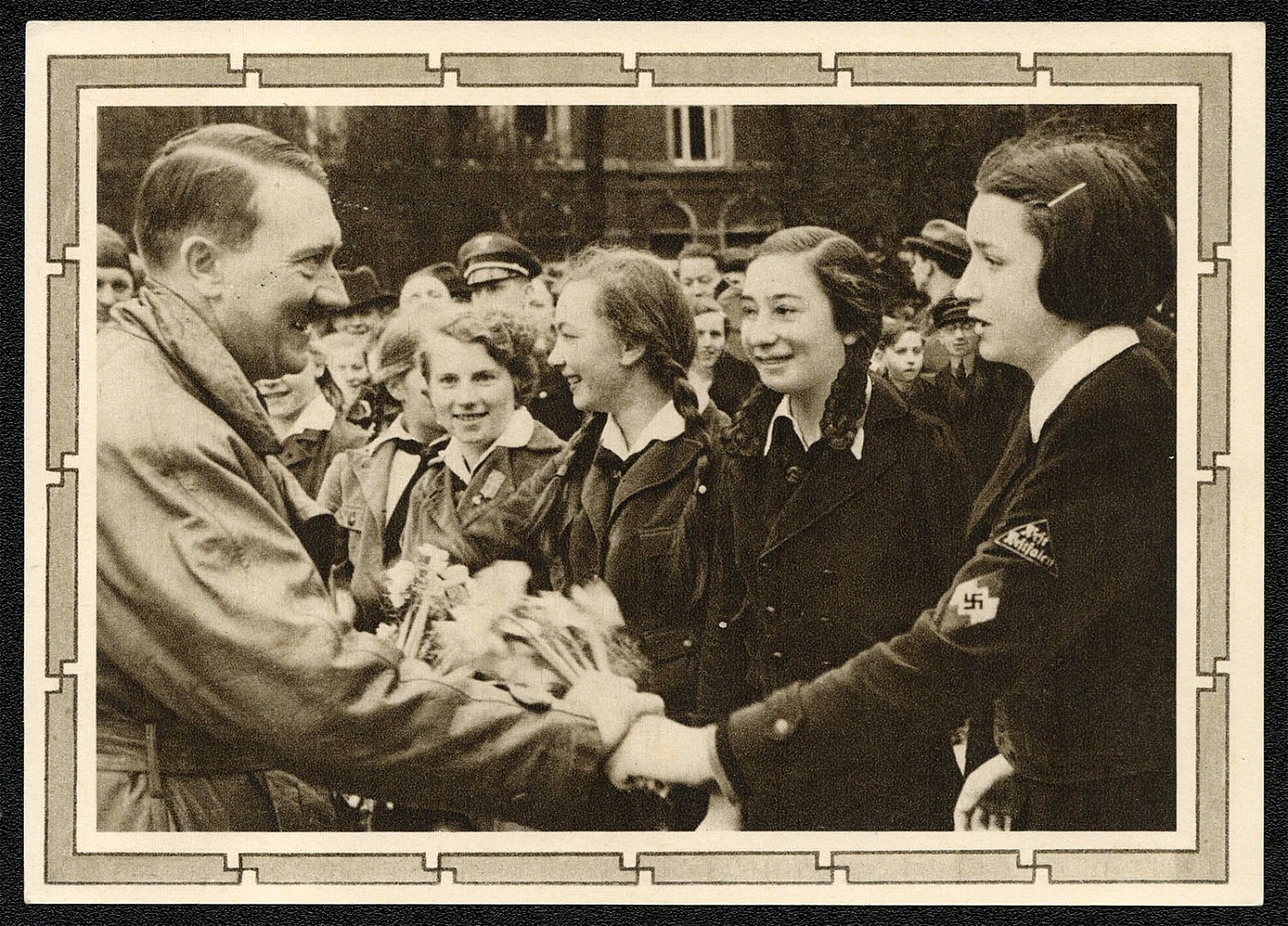
1939 Special Postcard issued in commemoration of Hitler’s 50th birthday (6)
Michel P 278/03 Berlin, 3 June 1939 with Special Cancellation commemorating the State Visit of the Yugoslav regent, Prince Paul. In the months preceding the invasion of Poland, Hitler began making overtures to Yugoslavia and Bulgaria as part of his great design for a campaign against the U.S.S.R. These plans included securing the Balkans, particularly the Romanian oil fields, against Soviet attack.
Unsold
103
$30
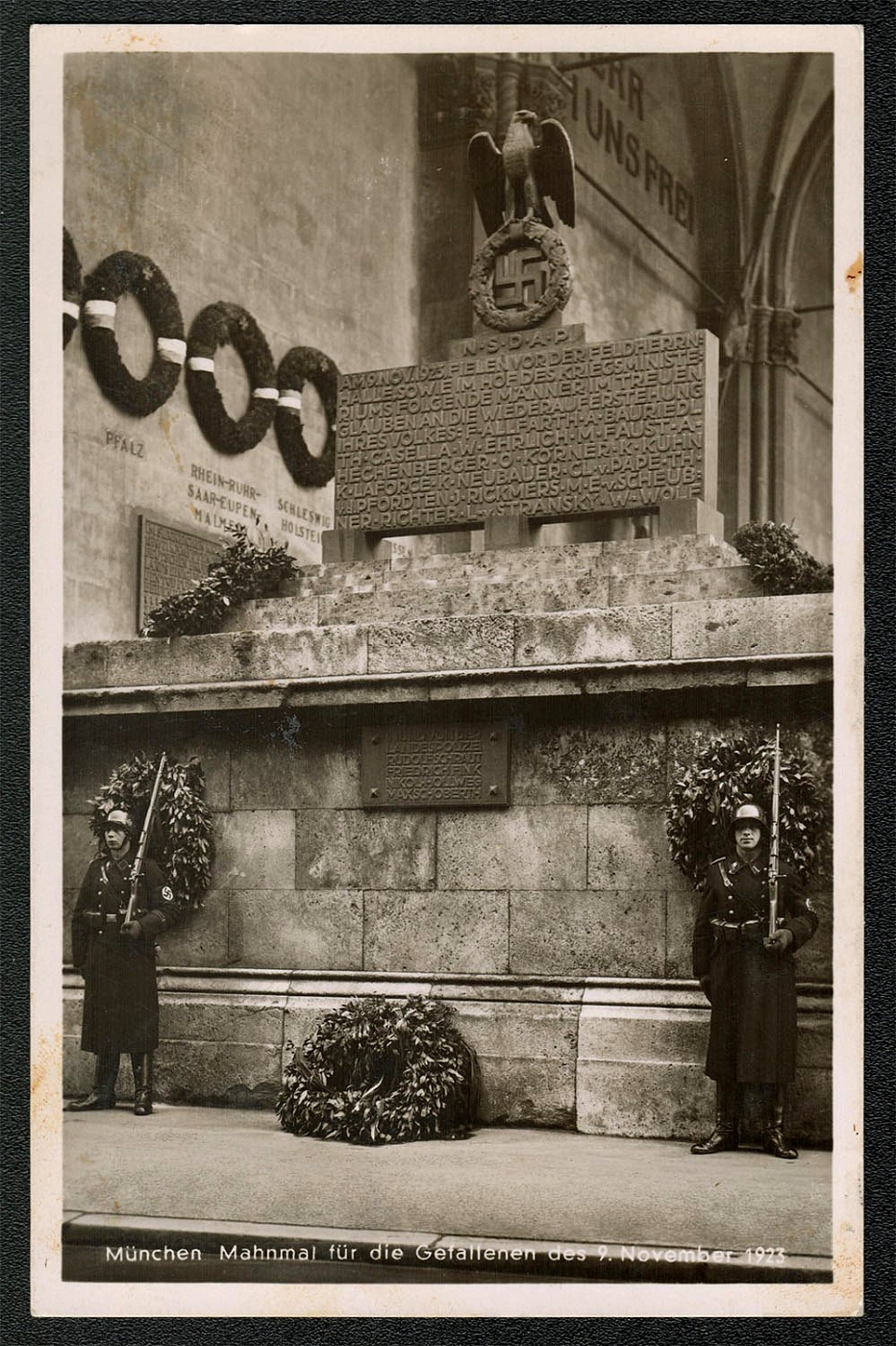
1939 Munchen - Memorial for the Fallen of 9 November 1923
Munchen - Memorial for the Fallen of 9 November 1923 Published by A. Lengauer, Miinchen Nr. 386 Postally used 30 May 1939, Munchen..
Sold for:
$30
104
-
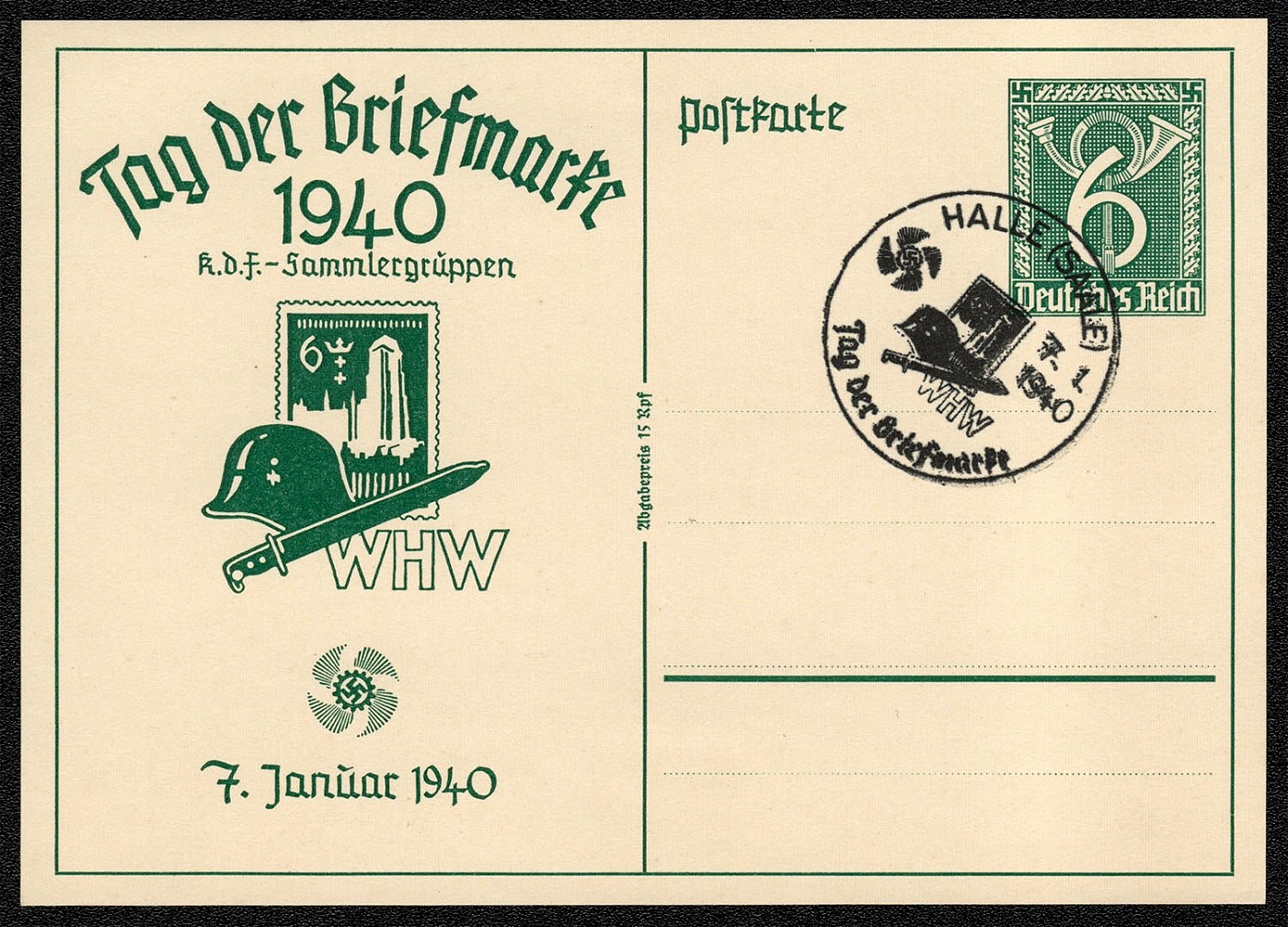
1940 Special Postcard for the 1940 Day of the Stamp.
Special Card for the 1940 Day of the Stamp. Michel P 288. Sponsored by the (Strength through Joy Collectors Group) Depicted are a steel helmet, a bayonet, and a facsimile of the 6 Rpf stamp issued in September 1939 for the return of Danzig to the Reich. The card sold for 15 Rpf. The illustrated Werbestempel (publicity slogan cancellation) postmarked 7 January 1940, Halle (Saale), has the same design as the cachet and was used in thirteen other towns on the 6lh and 7lh.
Unsold
105
-
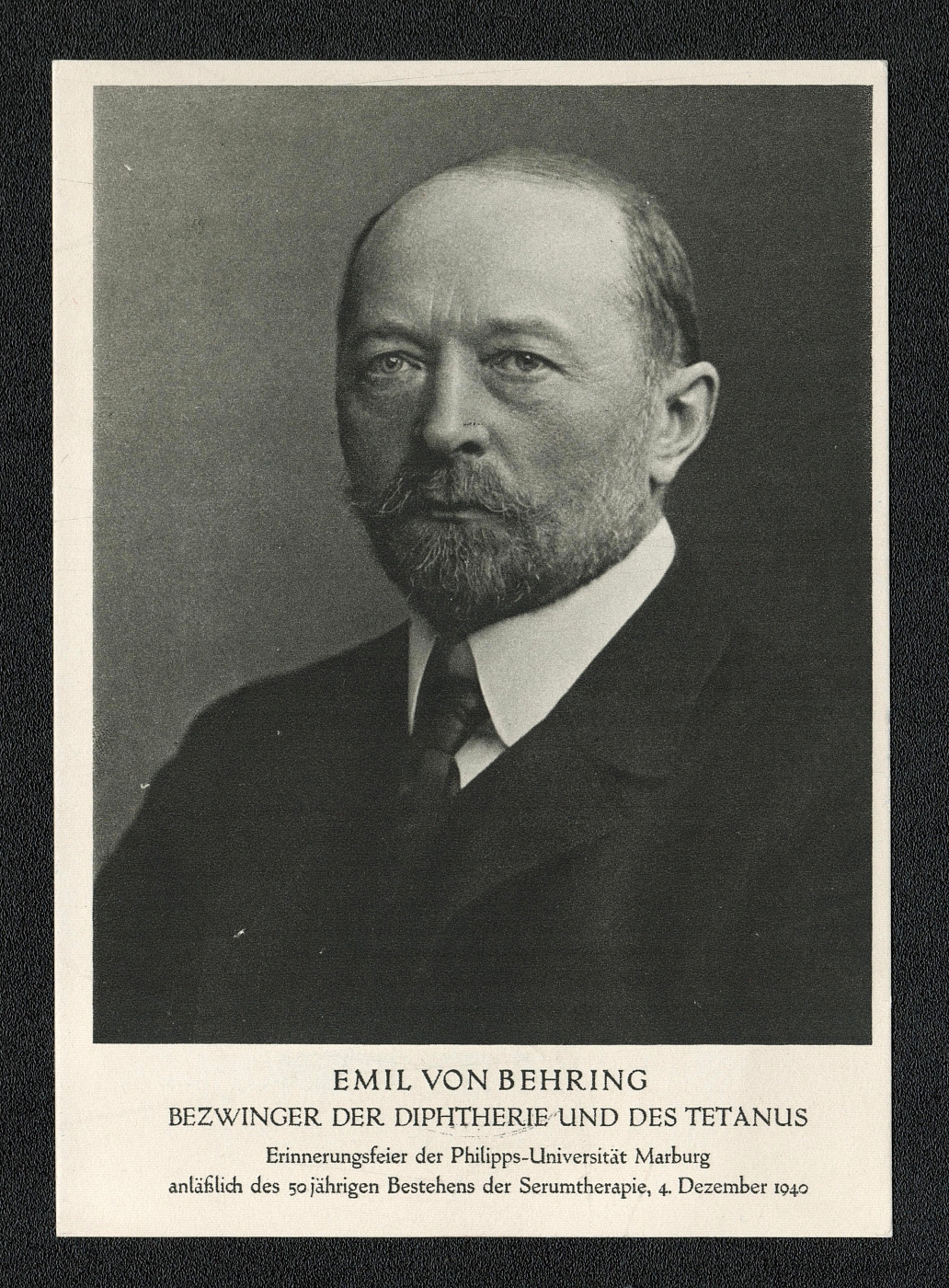
1940 Emil Von Behring Conqueror of Diphtheria and Tetanus
1940 Emil Von Behring Conqueror of Diphtheria and Tetanus
Unsold
106
-
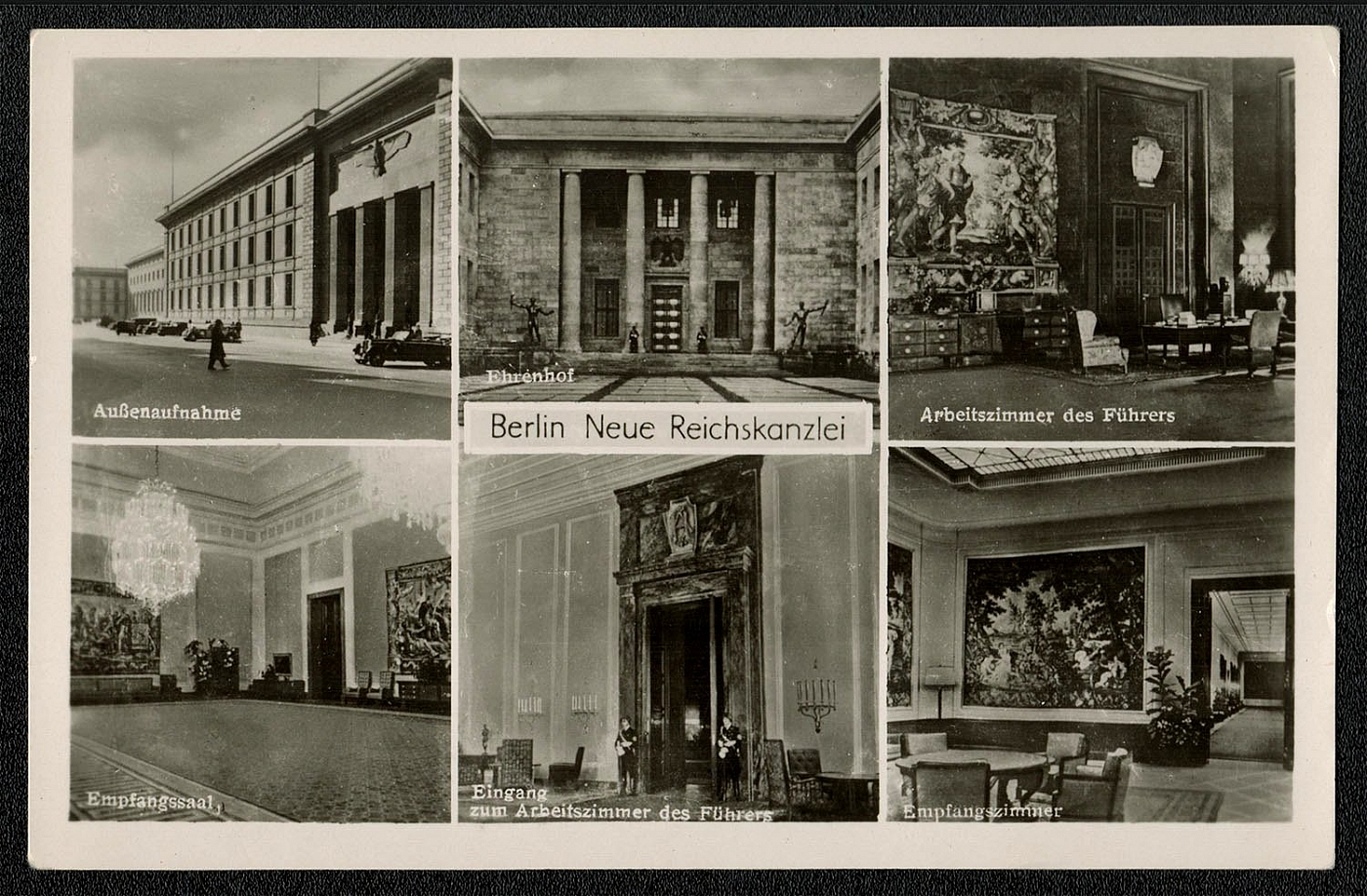
107
-

108
-
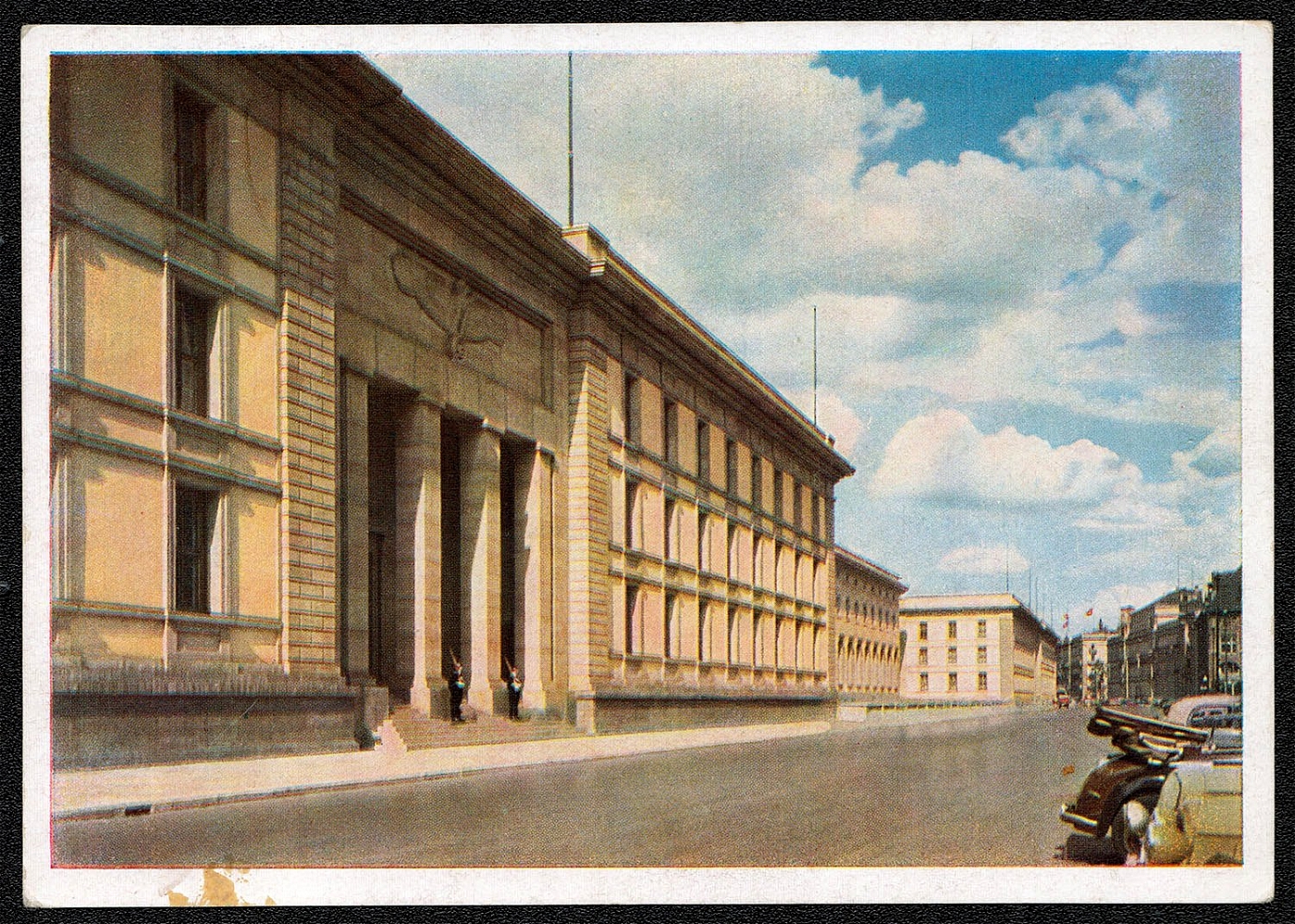
109
-
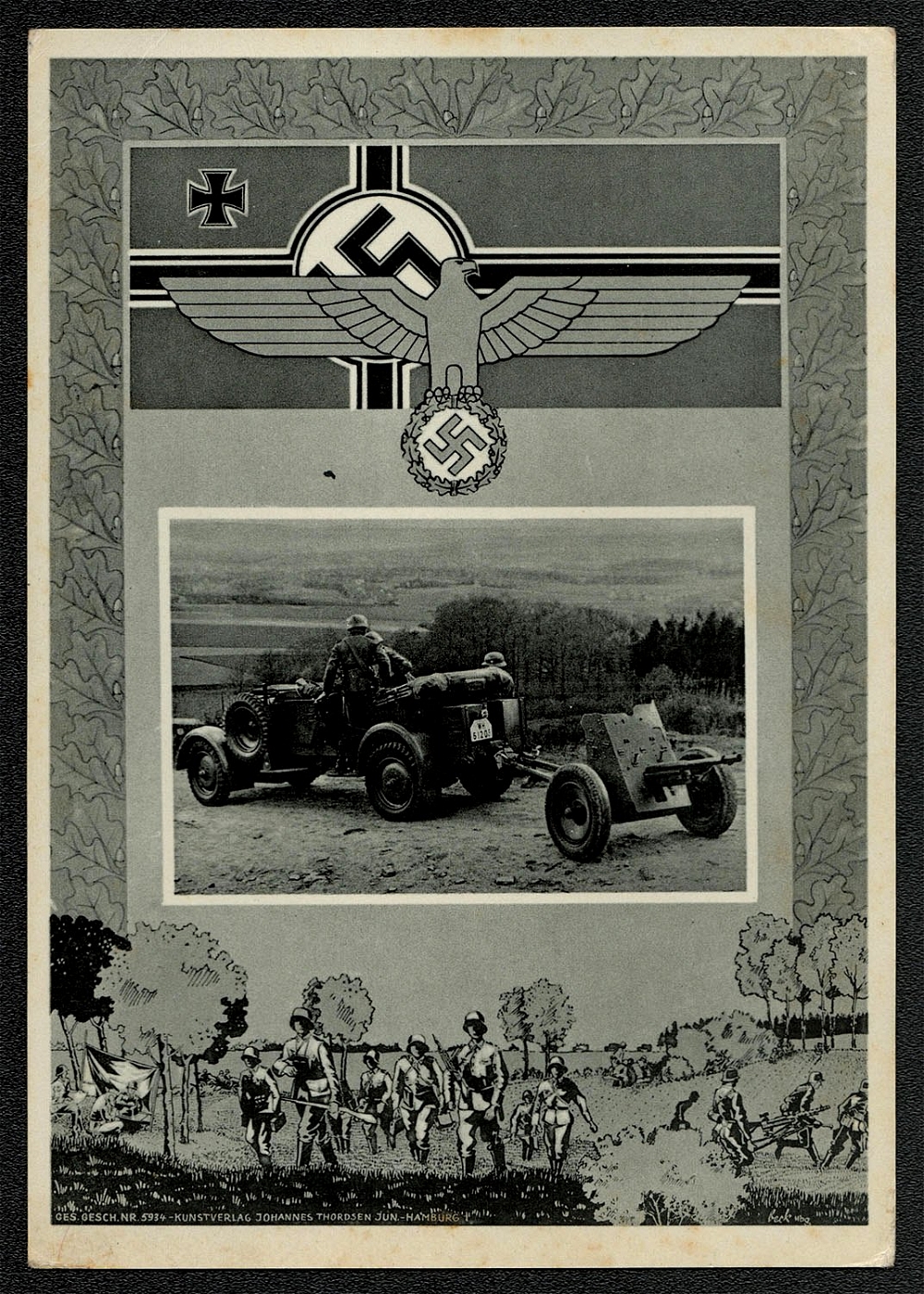
1940 Field artillery Commemorative Postcard
Field artillery commemorative post card published by Hans F. Martin, Spezial-Verlag fur Wehrmacht. Frankfurt a. M., Taubenstr. 5. Circa 1940.
Unsold
110
-
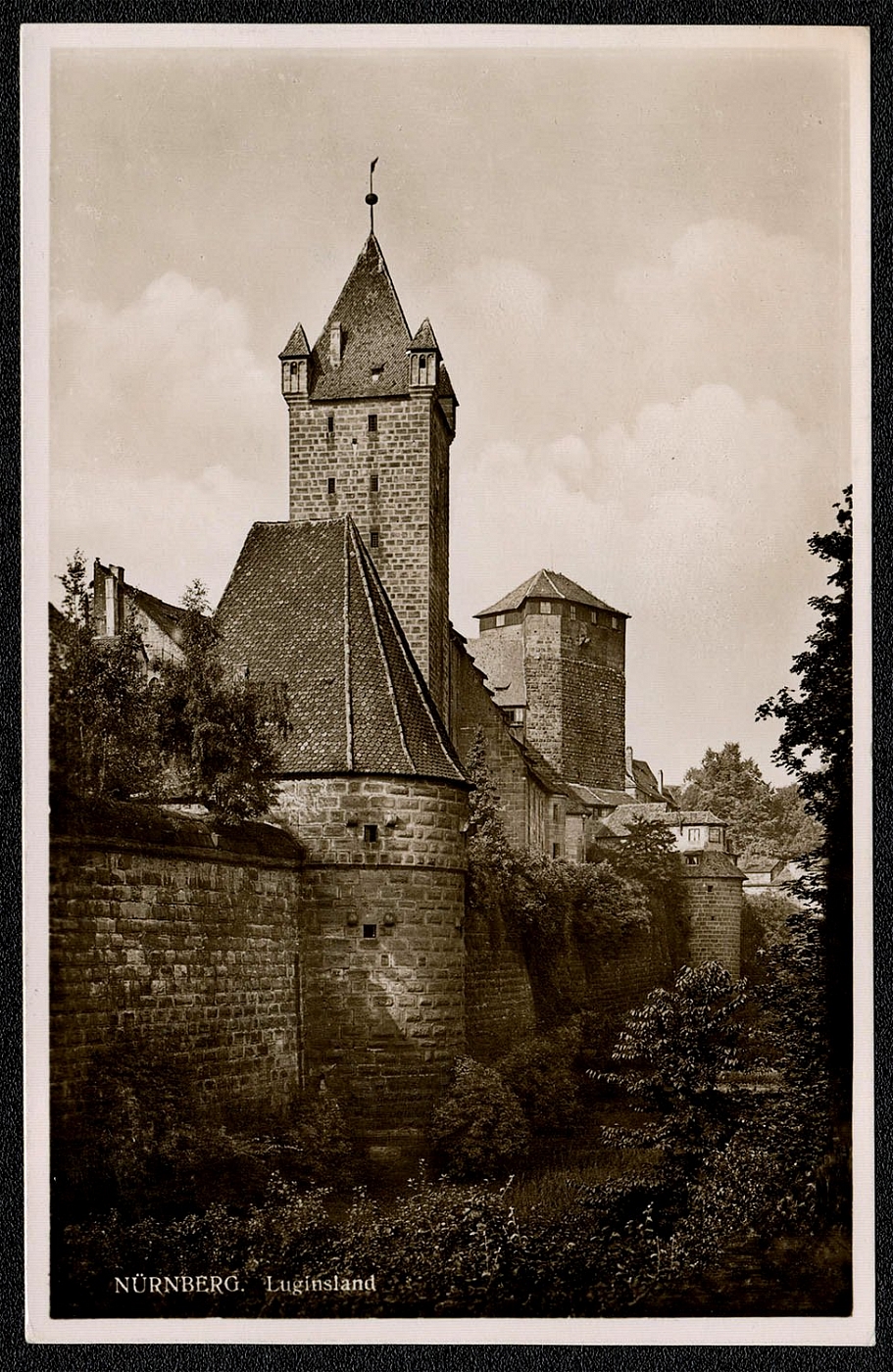
1940 Luginsland a municipal building erected by the Free City of Nurnberg
Niirnberg (Luginsland) View Card Publisher: Ludwig Riffehnacher, Fiirth i. Bayern, Wiirzburgerstr. 201 Franked with Sc 403 exhibiting a fine example of the “Eagle” roller cancellation, “a” date stamp. Posted in Niirnberg 2 on 6 May 1940. Luginsland, a municipal building erected by the Free City of Nurnberg, is a square tower surmounted by a helm with four turrets. It stands on the east side of the “Imperial Stables.” It was erected by the town in one operation in the bitterly cold winter of 1377 and w'as intended to allow the Free City to watch what was happening in the Burgrave’s Castle and was thus part of the system of defense with which the town surrounded the Castle before its final destruction in 1420. Later, this tower was used as a prison. At the end of the 15,h century the City connected the two formerly hostile towers—the Luginsland and the Pentagonal Tower—by erecting the wide tract of the Imperial Stables, thus producing an architectural group rich in contrasts and of great distinction.
Unsold
111
$16
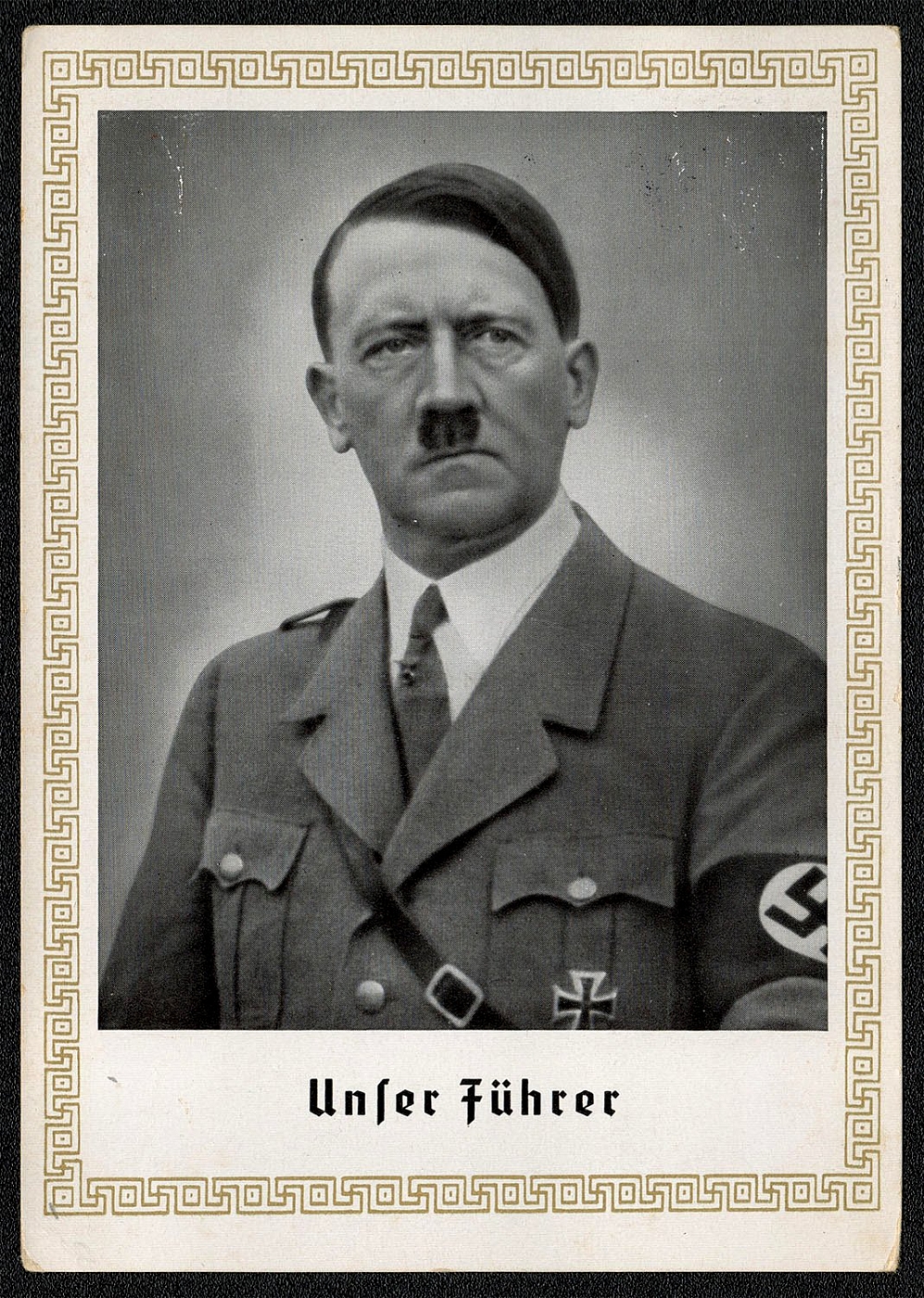
1940 Unser Fuhrer (Our Leader) Special postmark Hitler’s meeting with Mussolini in Munich
Scott No. 415 tied to propaganda photocard with cancellation commemorating Hitler’s meeting with Mussolini in Munich, 18 June 1940, to draw up the armistice terms for France. “It is still a mystery to me how this campaign has been won so easily by Hitler. There was no organized, well-thought-out defense as in the last war . . . the French let the Germans dictate a new kind of war.” William L. Shirer, Berlin Diary.
Sold for:
$16
112
-
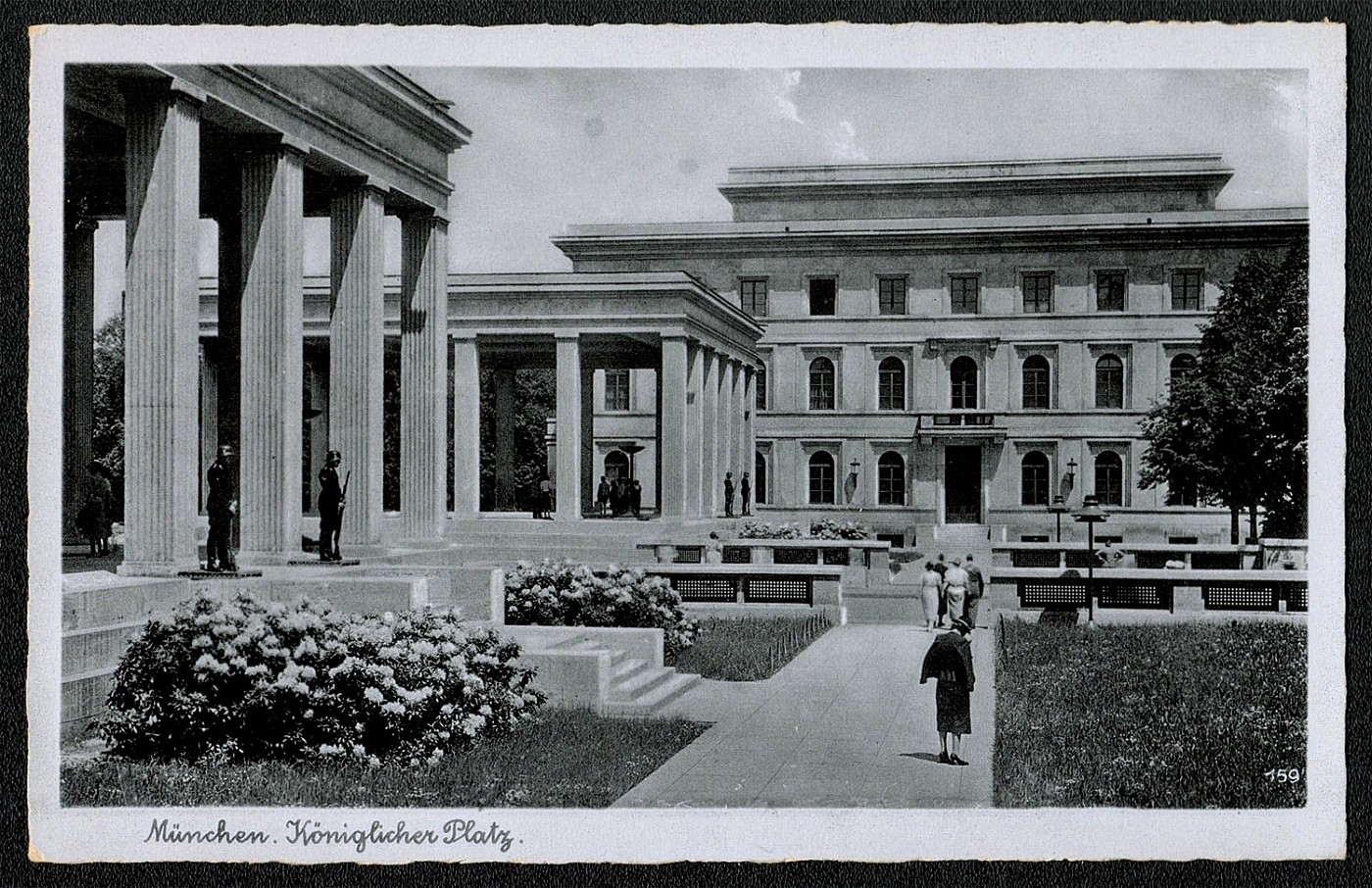
1940 Munich King's Square
Munchen, Koniglicher Platz (Published by Bronifilber Imitation. Nr. 159)
Unsold
113
-
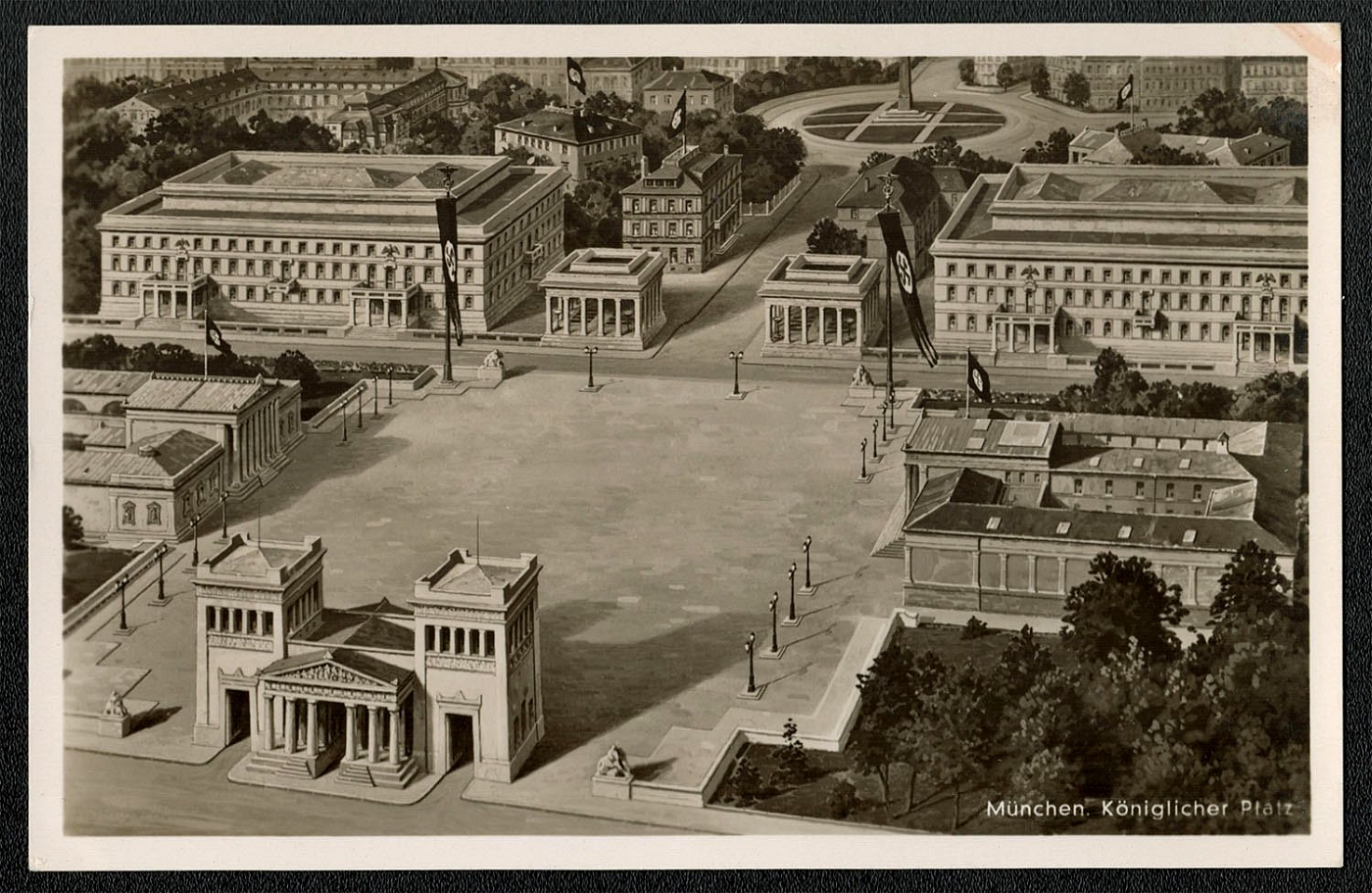
1940 Munich King's Square with Fuhrerhaus, Temple of Honor and Administration Building
Munchen, Koniglicher Platz init Fiihrerhaus, Ehrentempel und Verwaltungsgebaude, ini Hintergrund braunes Haus. (Koniglicher Platz in Munchen, with Fiihrerhaus, Temple of Honor and Administration Building, and in the background, the Brown House.) (Published by Kunstverlag M. Herpich, Munchen)
Unsold
114
-
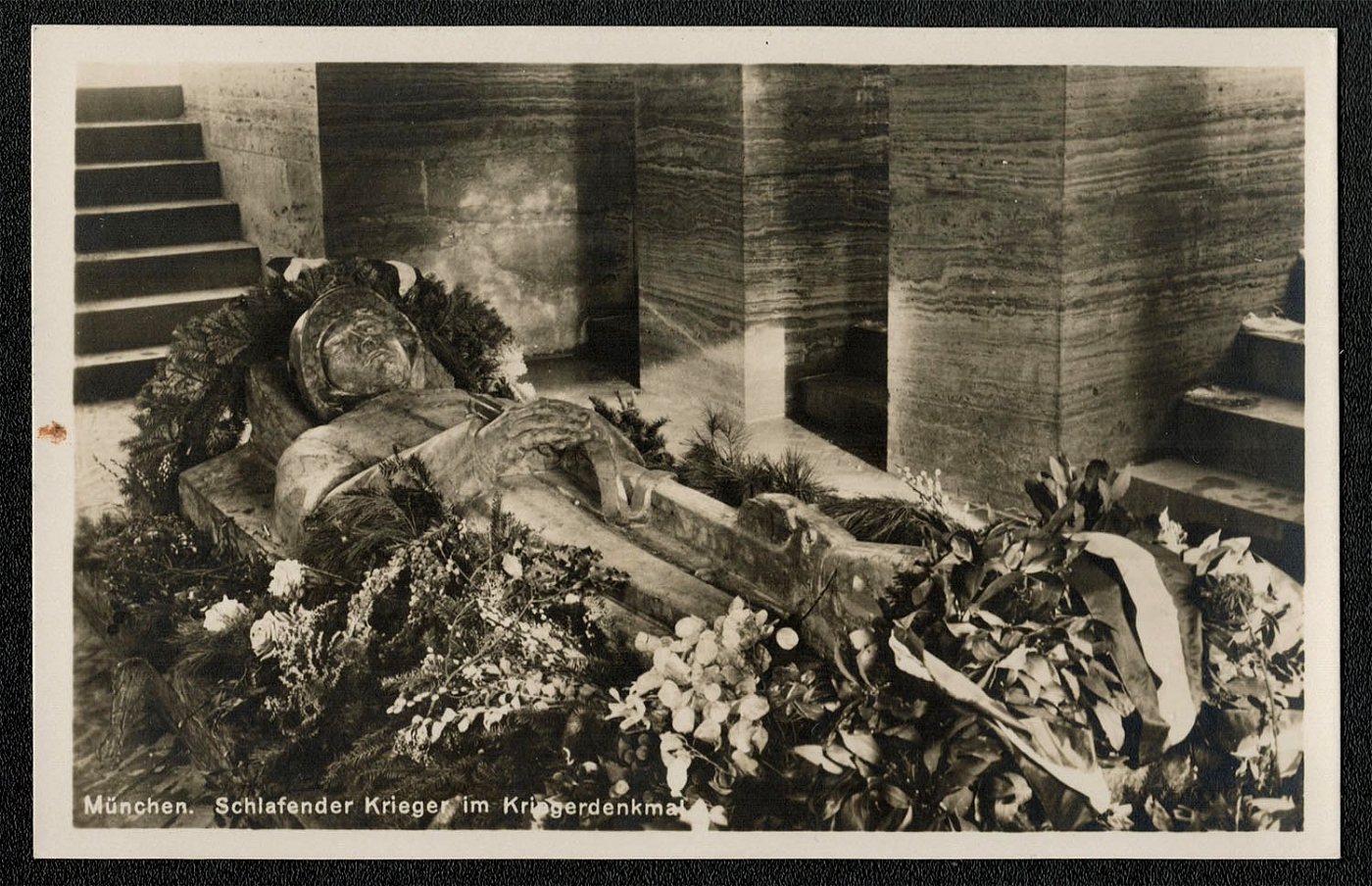
115
-
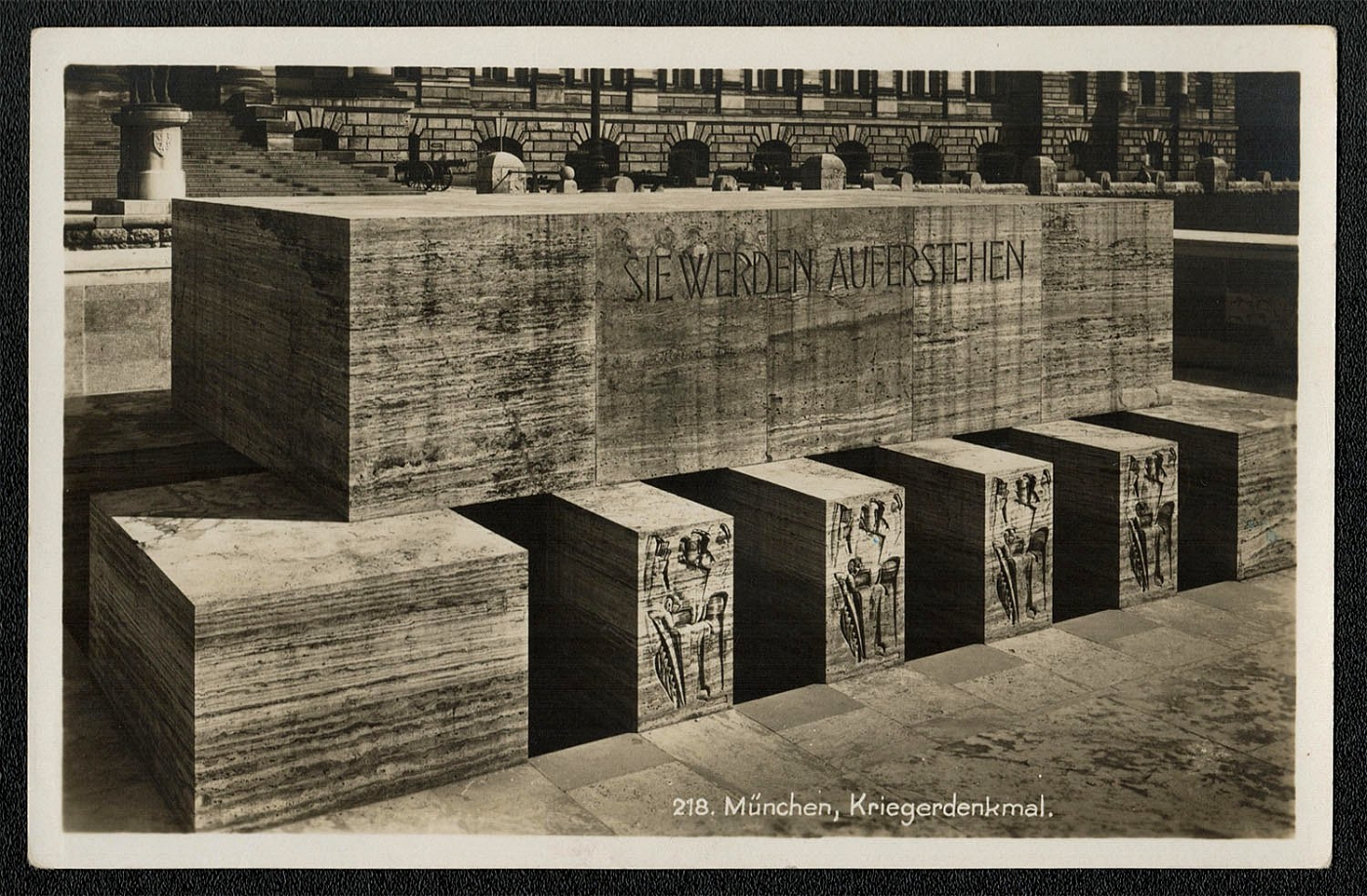
1940 Munich, War Memorial, You shall rise from the dead
1940 Munich, War Memorial, You shall rise from the dead
Unsold
116
$45
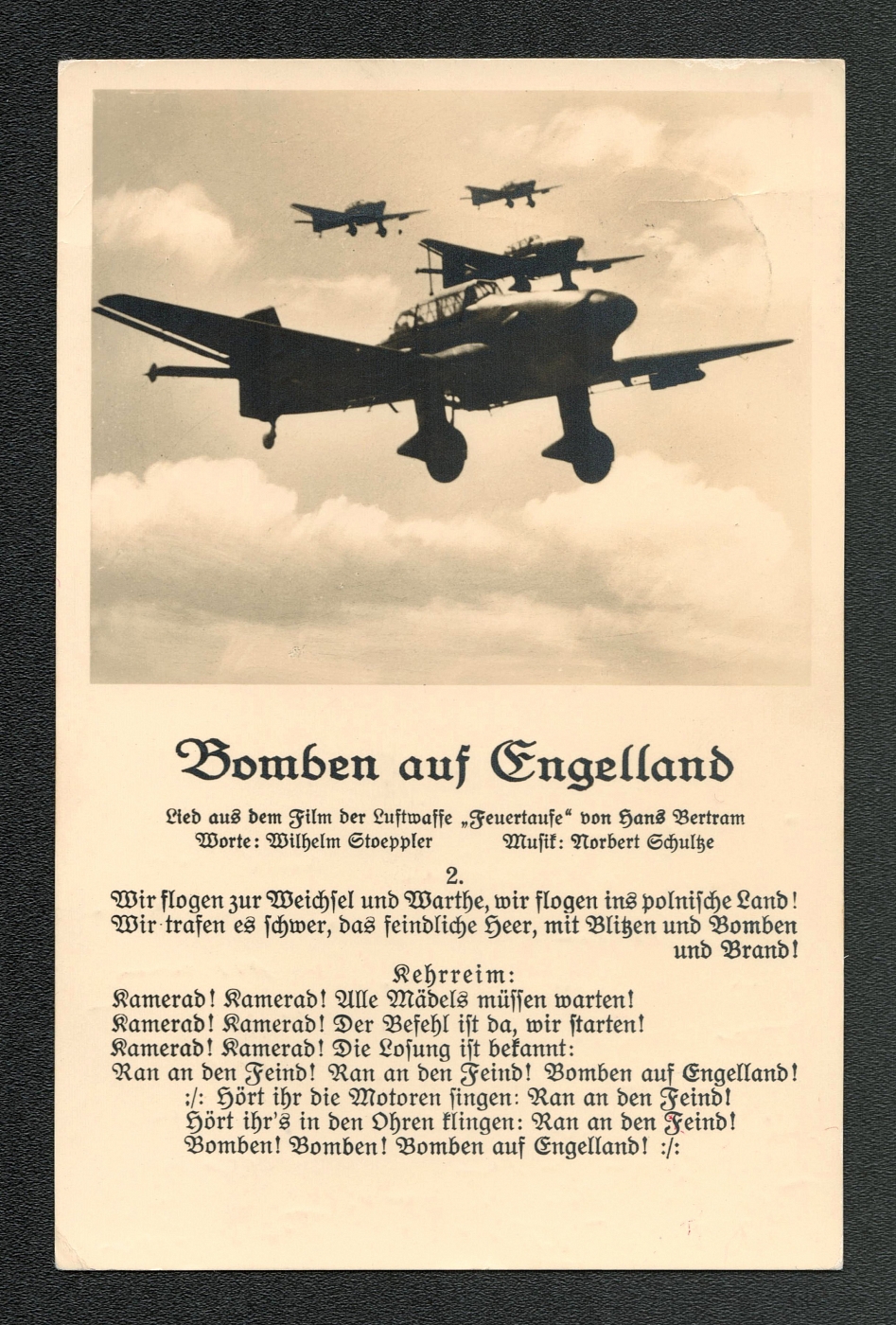
1940 Bombs on Engeland German Air Force, bomber Junkers Ju 87
1940 Bombs on Engeland German Air Force, bomber Junkers Ju 87
Sold for:
$45
117
-
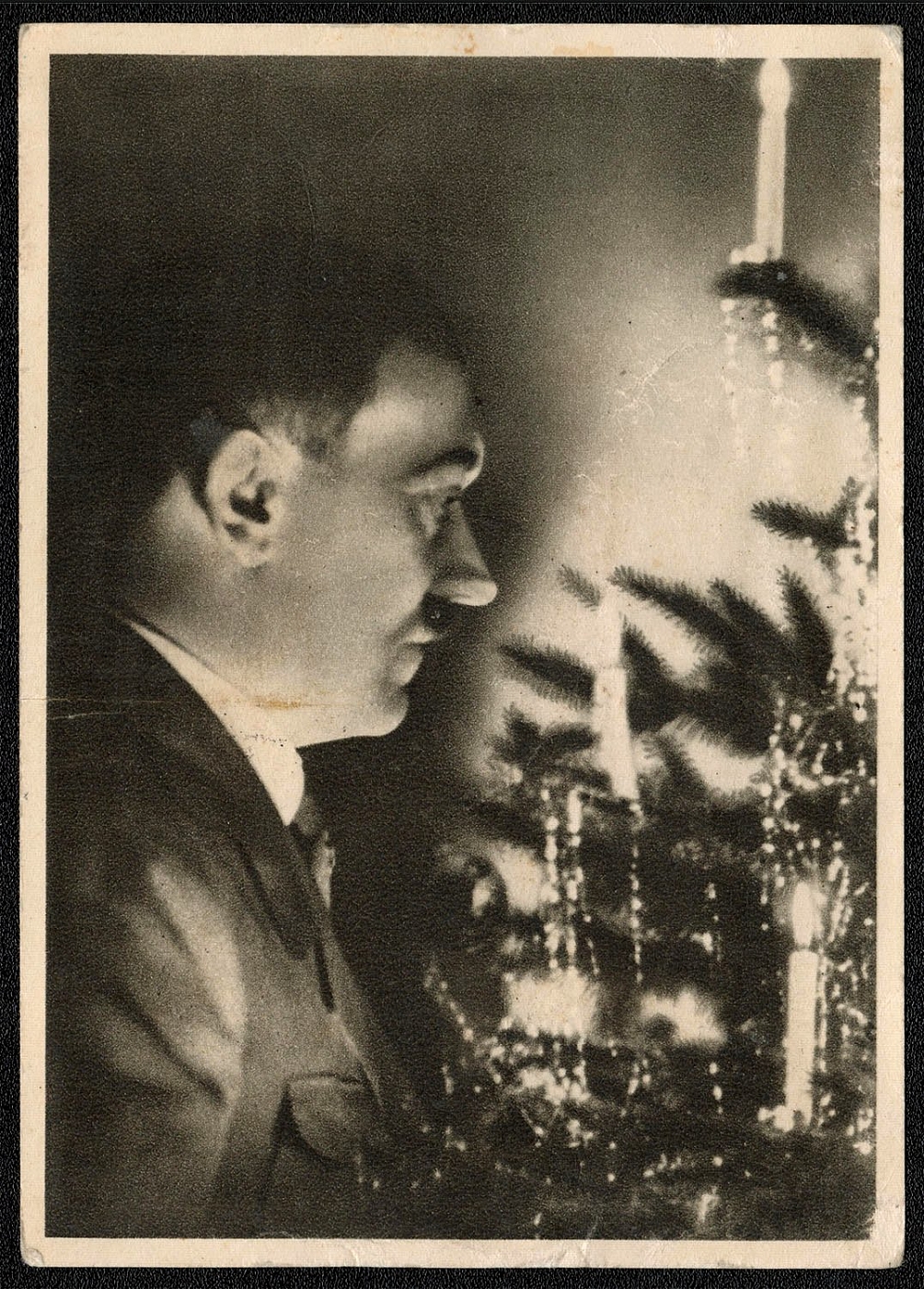
1940 Adolf Hitler, German Christmas
Organization for Germans Living Abroad released souvenir sheets and post cards during the war to raise money. This card was printed by Verlag: Volksbund, the agency’s official publisher, Berlin W30.
Unsold
118
$10
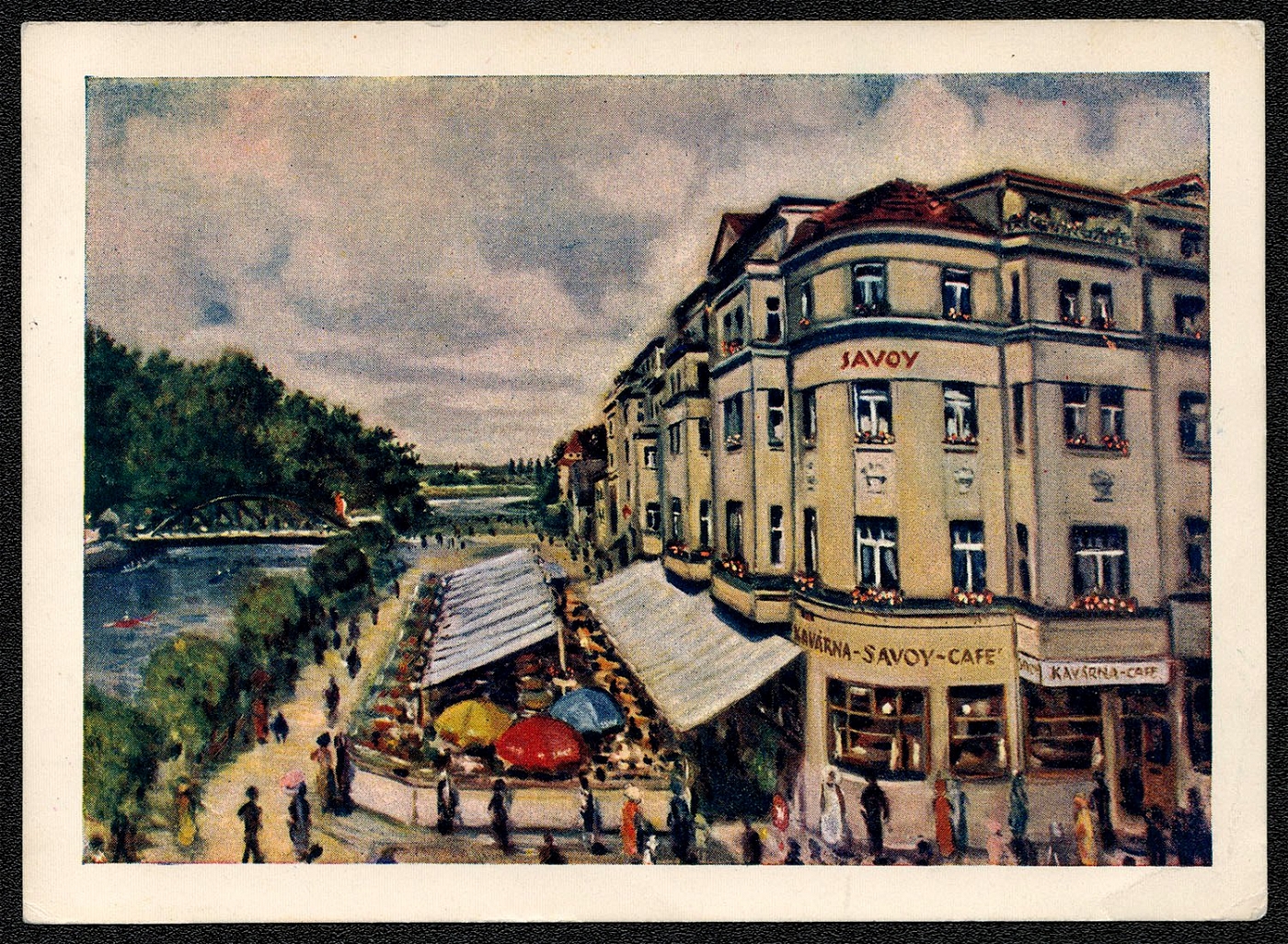
1940 Prag Picture Postcard Official German Field Post
"Picture post card sent through the Official German Field Post. Mailed from Prag 2 on 6 March 1940 to Neckarsulm, a small town in Southern Germany with a 1940 population of approximately 7800 inhabitants. It is 40 miles north of Stuttgart on the right bank of the Neckar River. The violet handstamped return address translates as: 14""1 Panzer Defense Company First Infantry-Regiment 35"
Sold for:
$10
119
$16
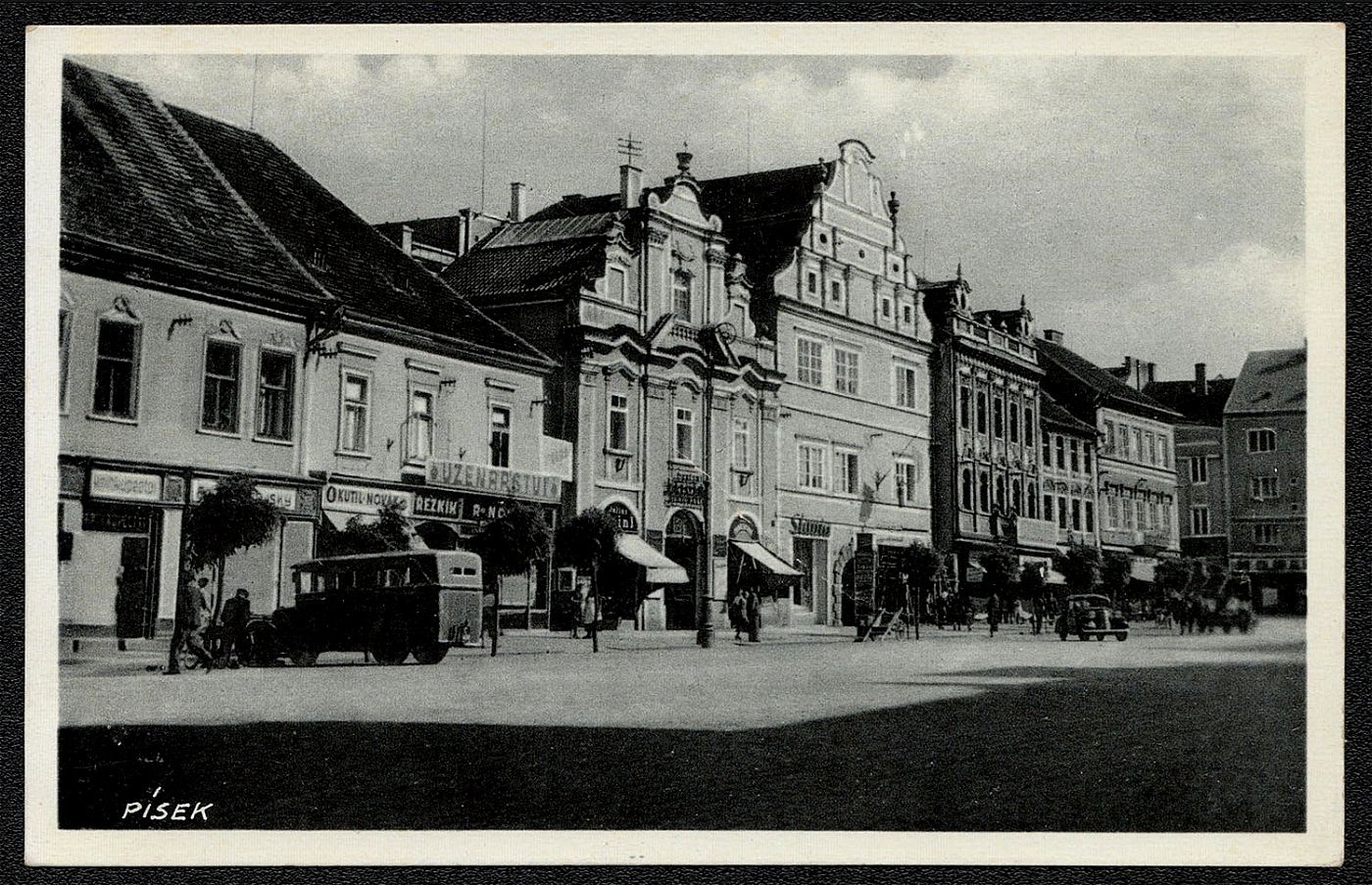
1940 Prag Bohemia and Moravia Official German Field Post
Picture post card sent through the Official German Field Post. Mailed from Prag 2 on 12 April 1940 to Neckarsulm in Southern Germany. The circular handstamp is of Feldpost origin, but the literal translation is unknown at this time.
Sold for:
$16
120
$14
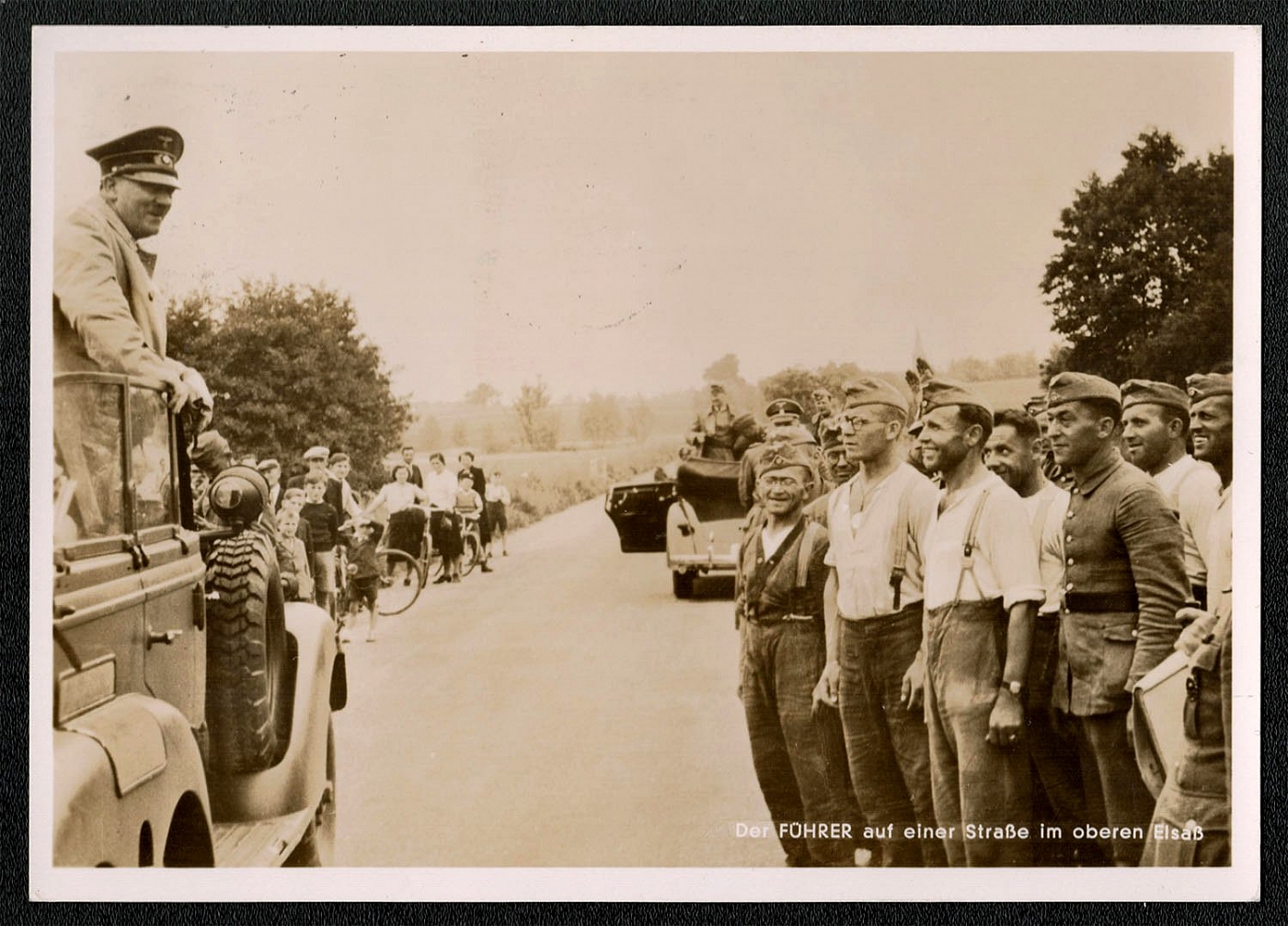
1940 German Occupation Luxembourg The Fuhrer on some road in upper Alsace
“The hour has come for the decisive battle for the future of the German nation. For 300 years the rulers of England and France have made it their aim to prevent any real consolidation of Europe and above all to keep Germany weak and helpless. With this your hour has come. The fight which begins today will decide the destiny of the German people for 1,000 years. Now do your duty.” Thus Hitler to his army on the eve of the assault against the west. The army’s duty was to conquer Holland, Belgium, and Luxembourg, overrun France, and bring Britain to her knees. It did not seem too difficult. The attack had all been planned with meticulous care and, in its early stages, it was carried through with consummate skill. Holland, Belgium, and Luxembourg seemed assured. It was one of the most skillfully conceived and competently conducted campaigns in military history.
Sold for:
$14
121
$20
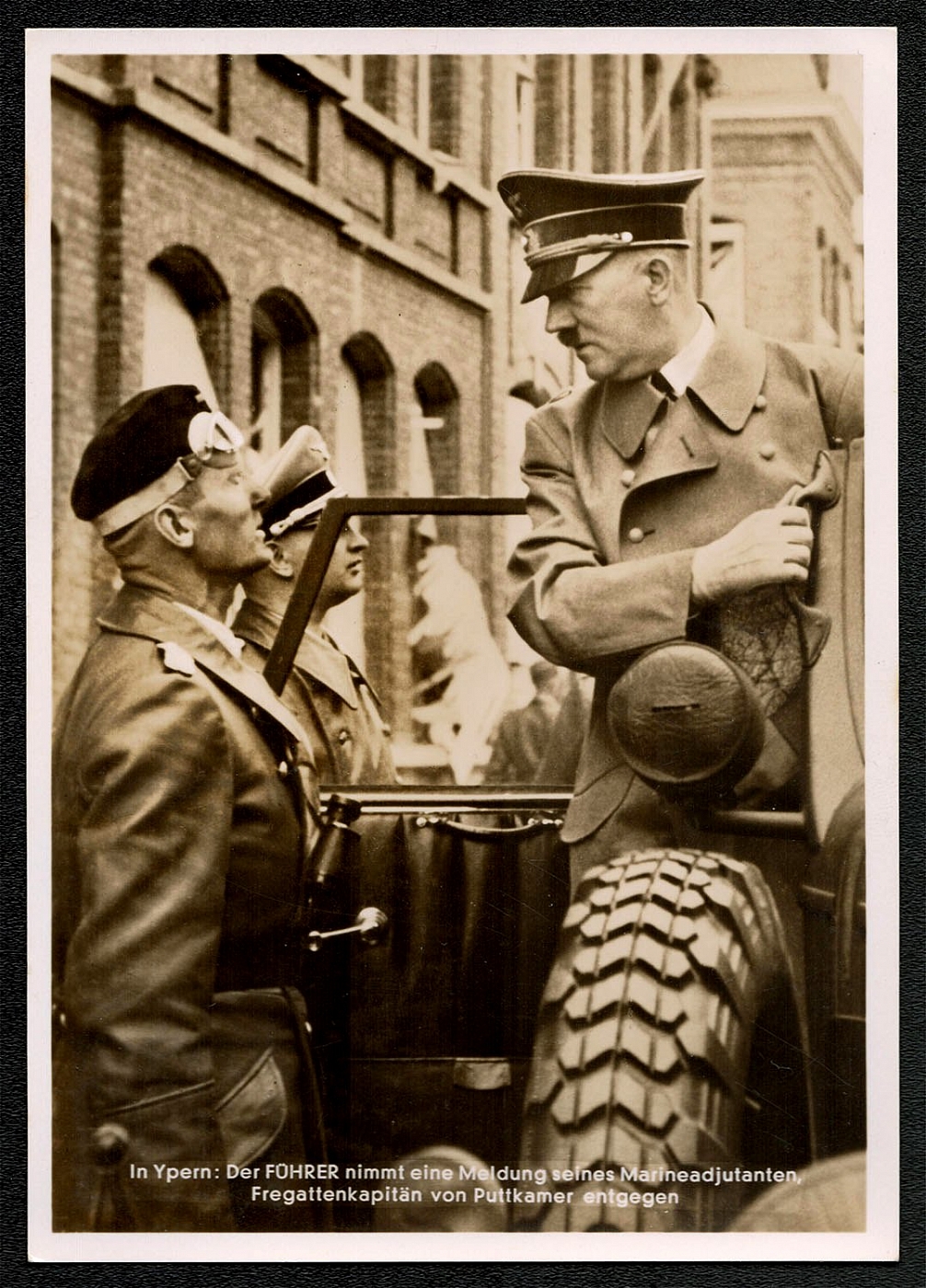
1940 German Occupation Luxembourg FDC card The Fuhrer gets a good report from his Marine Adjutant and Navy Commander
leper (Ypern in German), a commune in the Belgian Province of West Flanders, was the scene of three great World War I battles, and again in the front lines of the German armored assault through the Low Countries, 10-21 May 1940.
Sold for:
$20
122
-
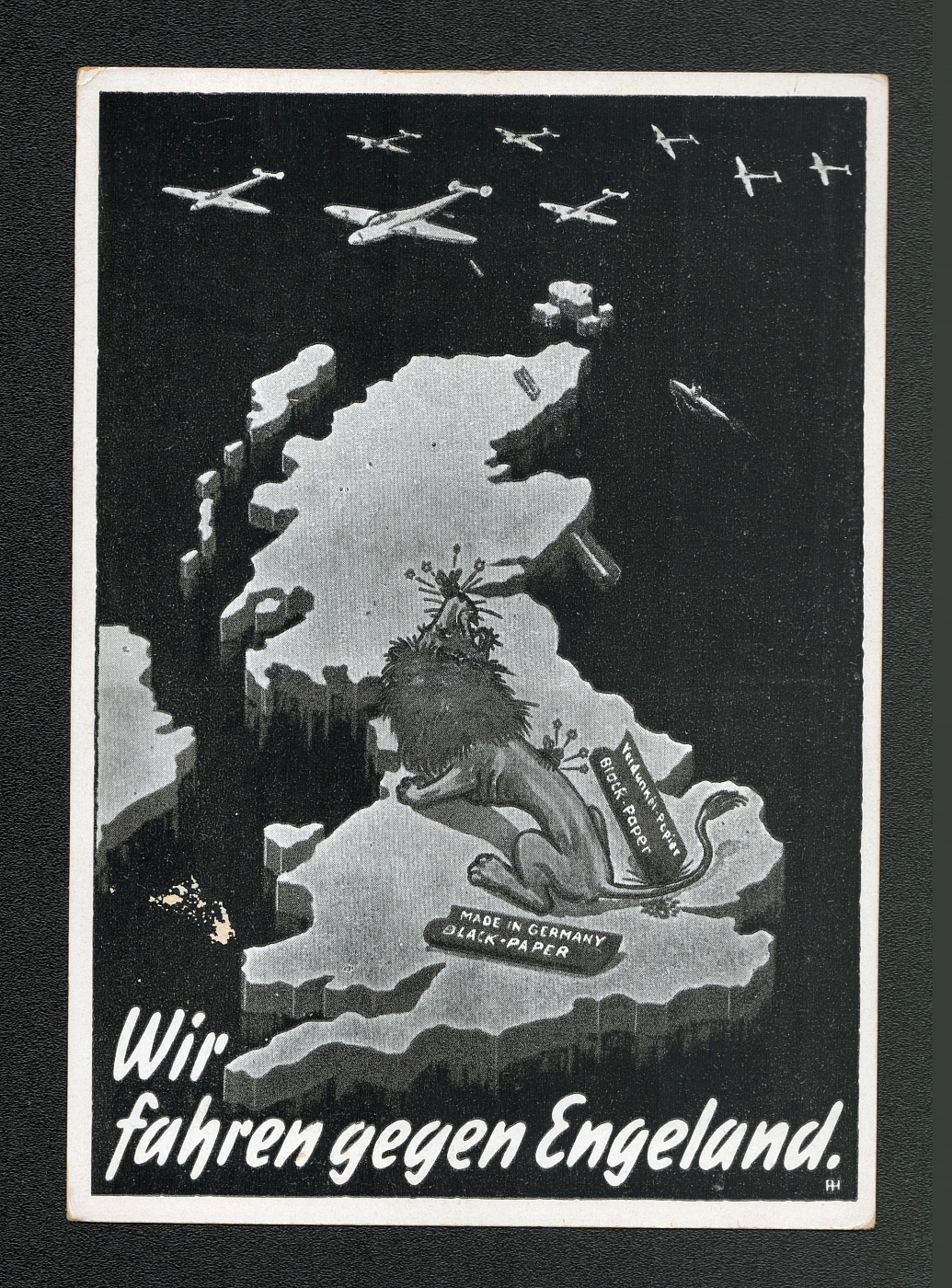
1940 We're move towards England. Propaganda postcard
1940 We're move towards England. Propaganda postcard
Unsold
123
-
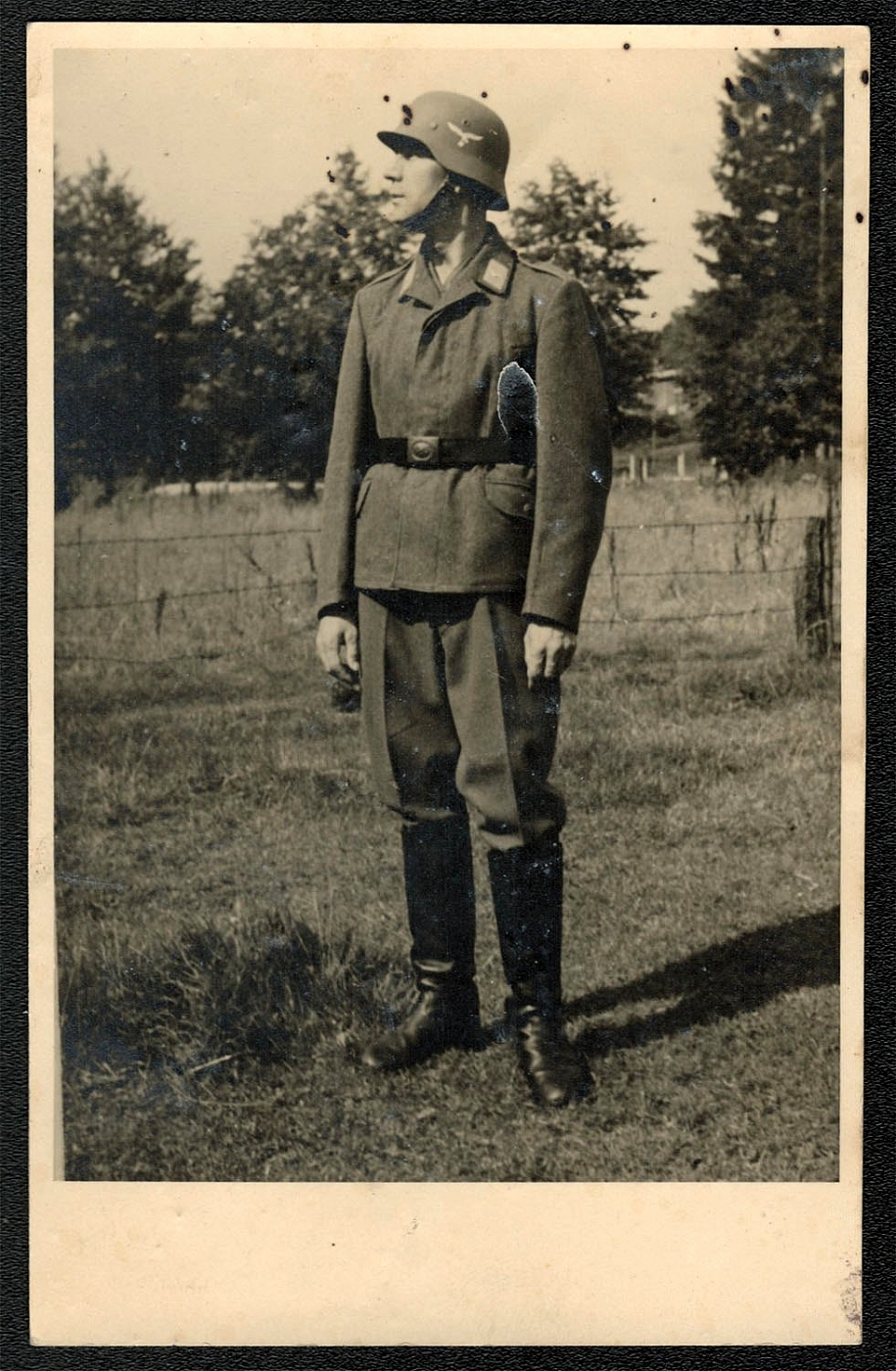
1940 Unmailed Agfa photo post card depicting a young, undecorated member of the Luftwaffe judging by the insignia on his helmet
Unmailed Agfa photo post card depicting a young, undecorated member of the Luftwaffe judging by the insignia on his helmet.
Unsold
124
-
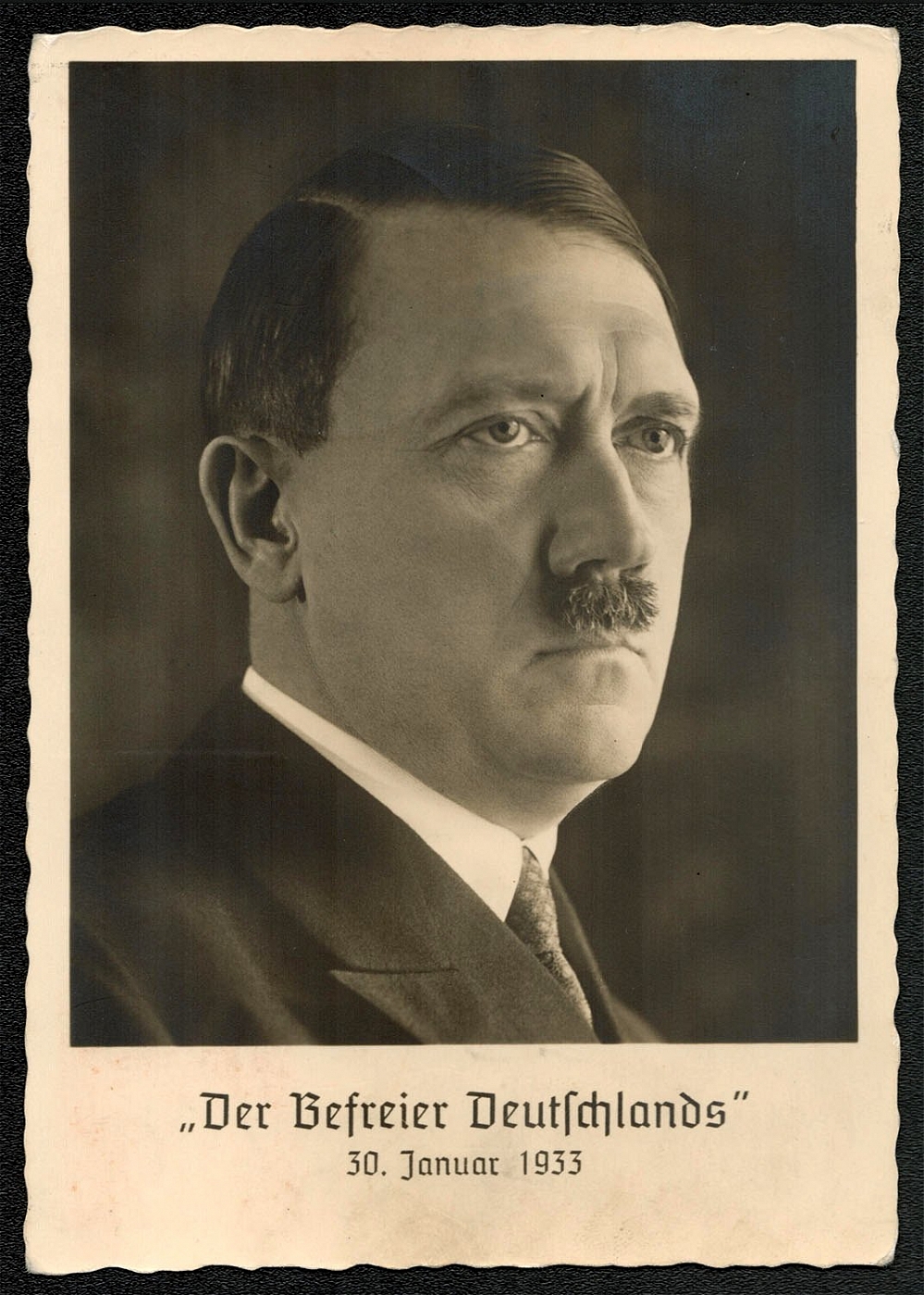
1940 The Liberator of Germany
Hoffman photo card franked with Scott Nos. 152, 152A and В169 cancelled to order: 21 July 1940, Munchen-Riem - The International Obstacle Course Games 28 July 1940, Munchen-Riem - The Brown Ribbon of Germany 31 August 1941, Press Post Office at the National House, Leipzig - The Reichs Fair City
Unsold
125
-
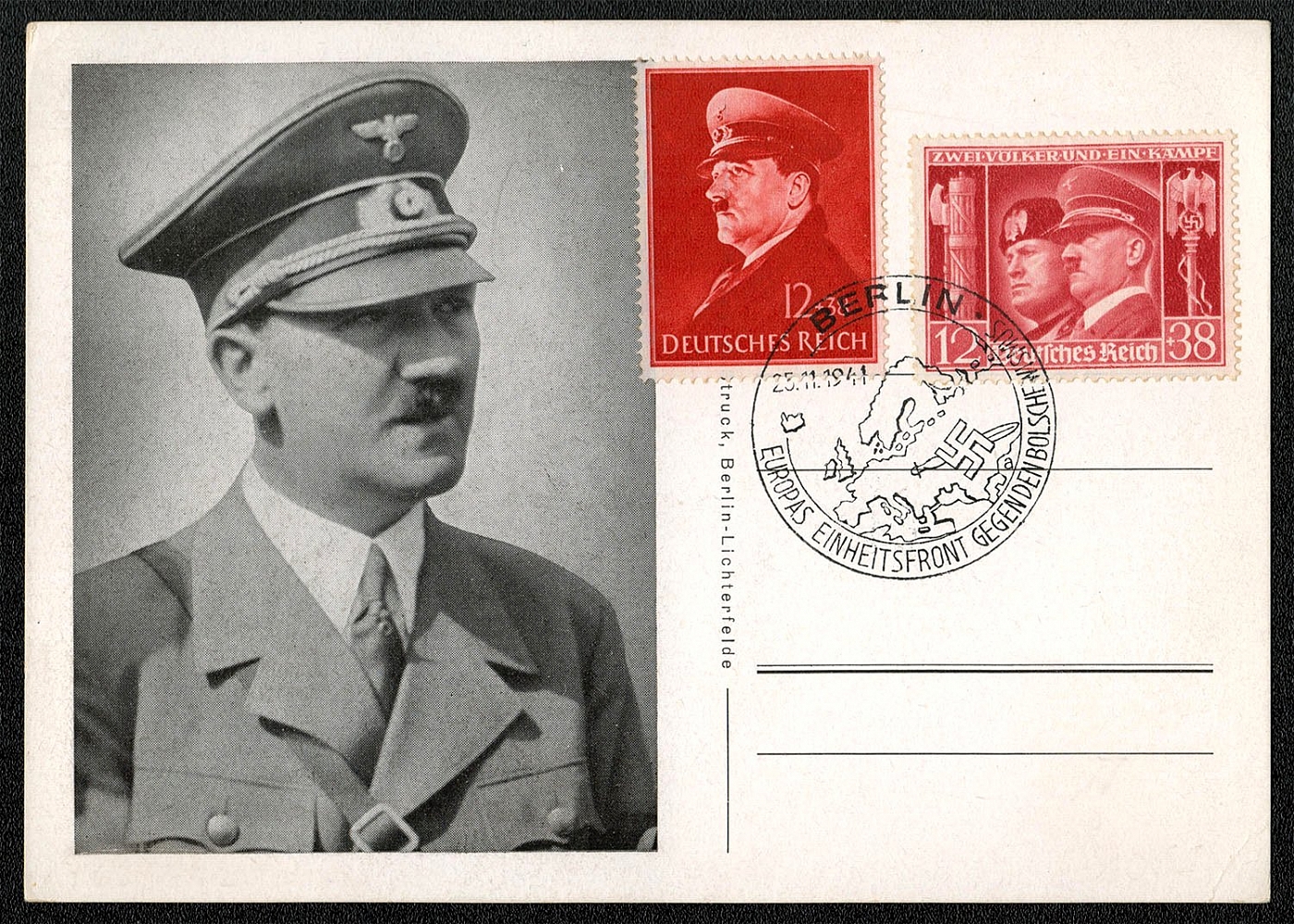
1941 Adolf Hitler Europe’s United Front Against Bolshevism
Hitler photo card franked with Scott Nos. B189 and B190. The commemorative cancellation reads: Berlin - 25 November 1941. “Europe’s United Front Against Bolshevism.”
Unsold
126
-
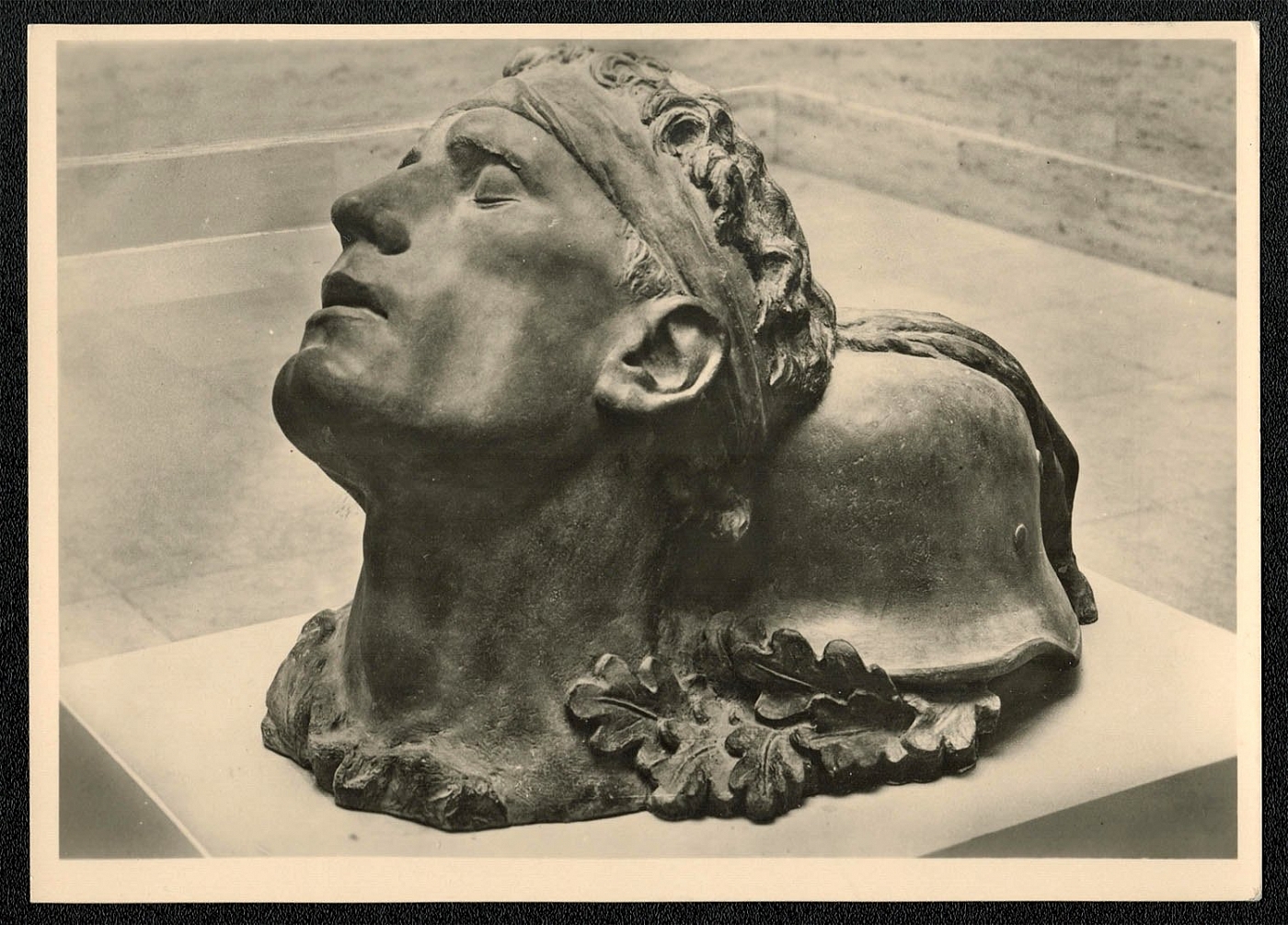
1942 Munich House of German Art In Memoriam by Paul Bronisch
1942 Munich House of German Art In Memoriam by Paul Bronisch
Unsold
127
-
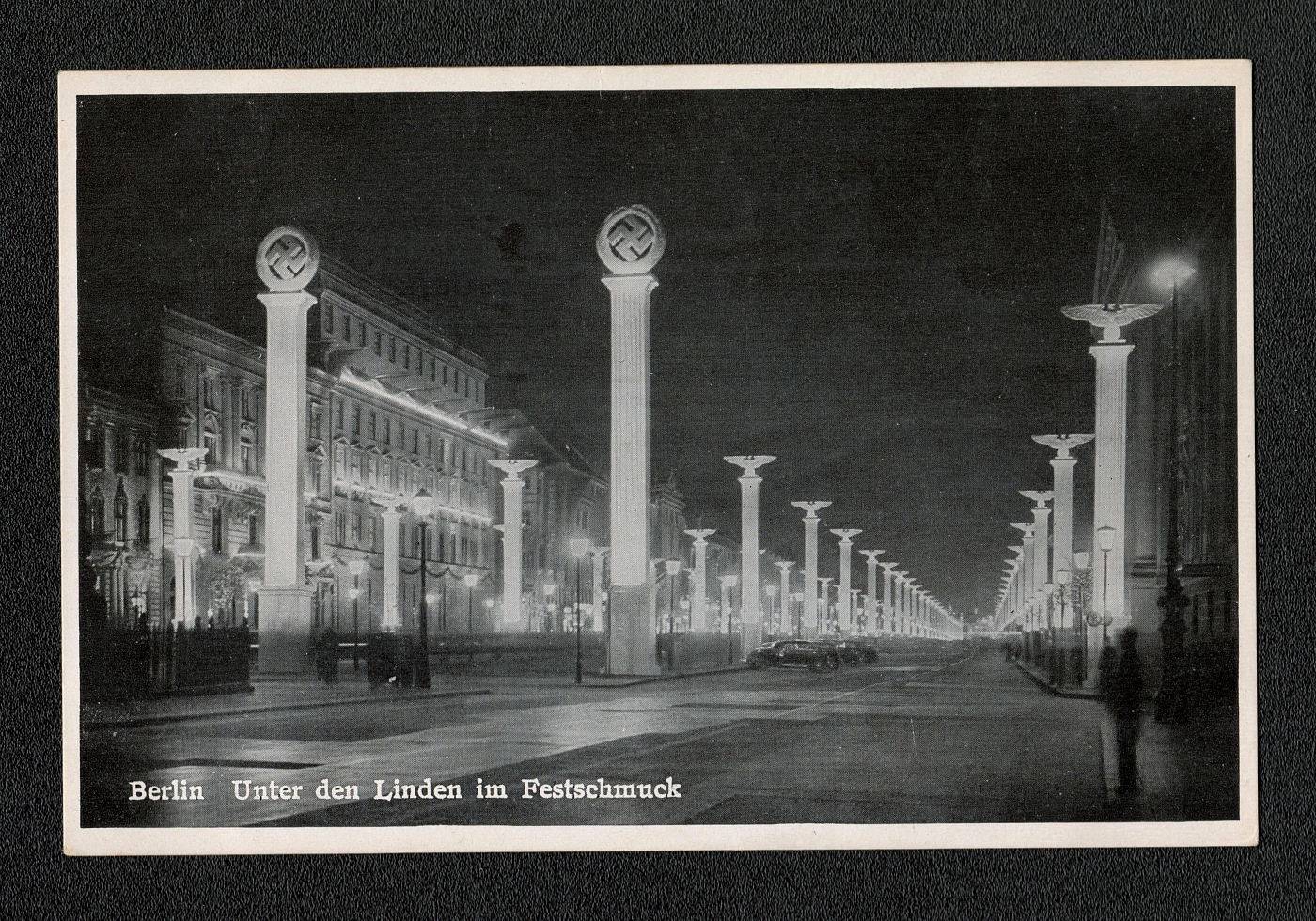
128
$10
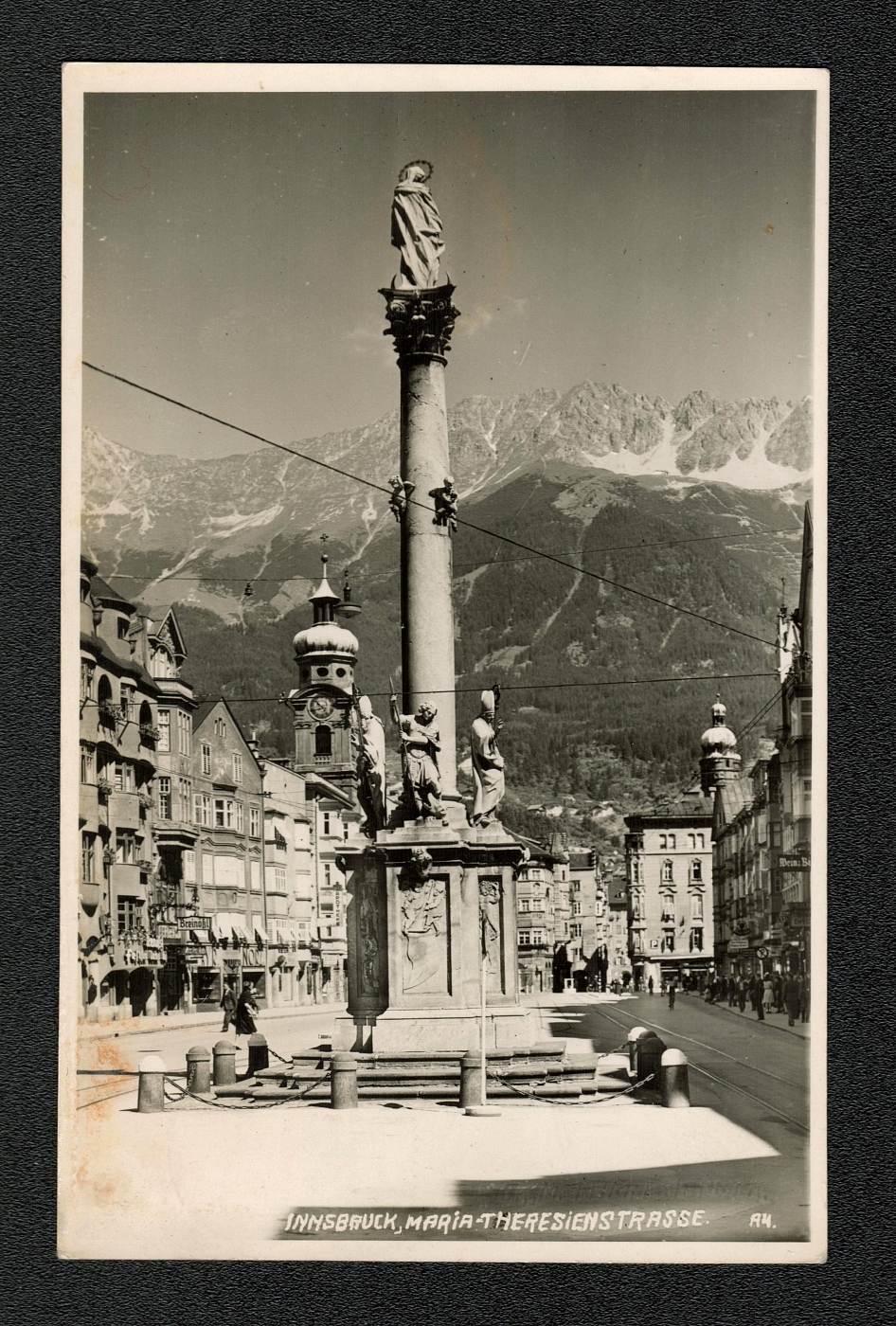
129
$25
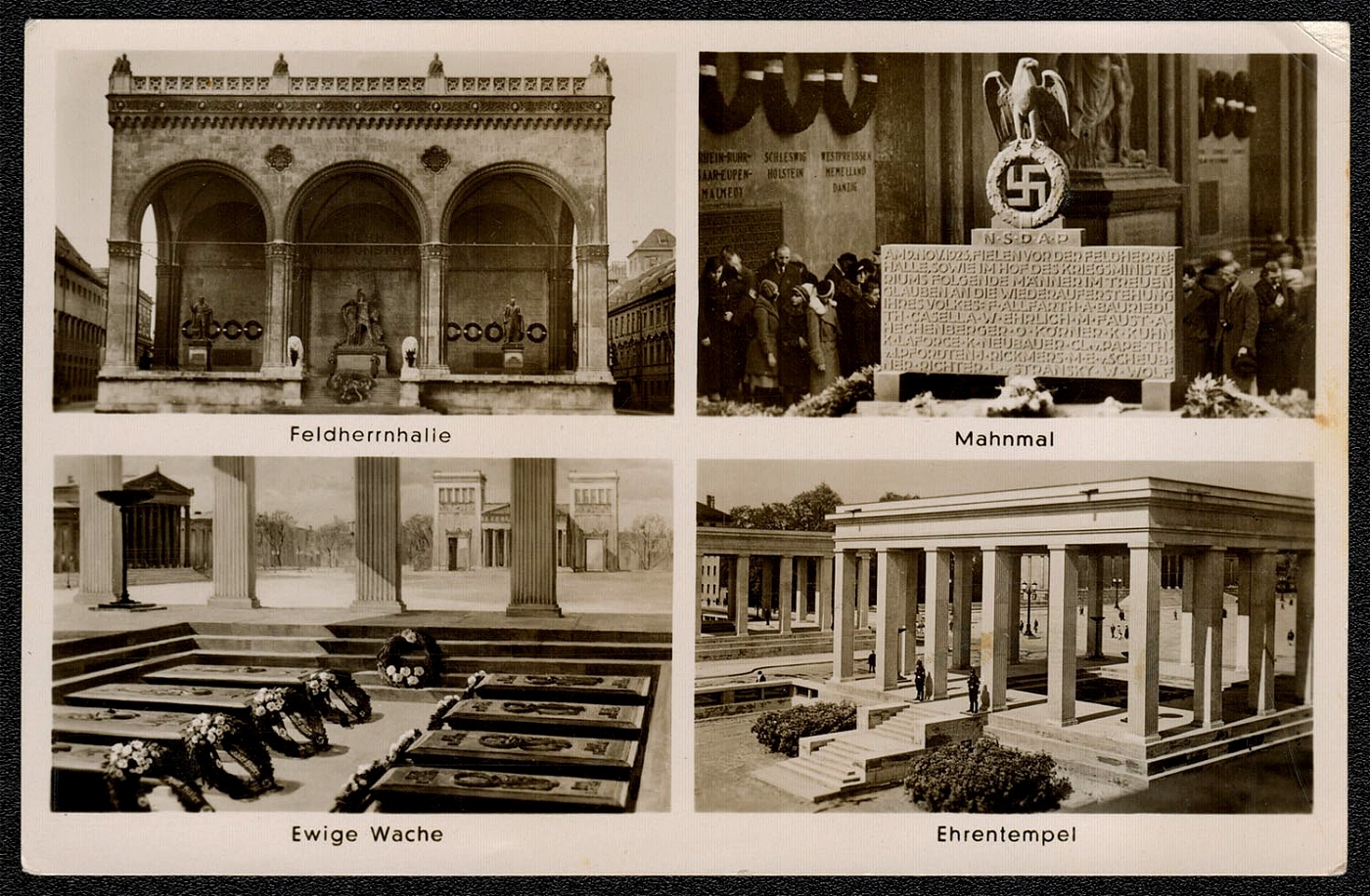
1942 Munich. General’s Monument, Memorial Tablet, Eternal Watch, Temple of Honor
1942 Munich. General’s Monument, Memorial Tablet, Eternal Watch, Temple of Honor
Sold for:
$25
130
-
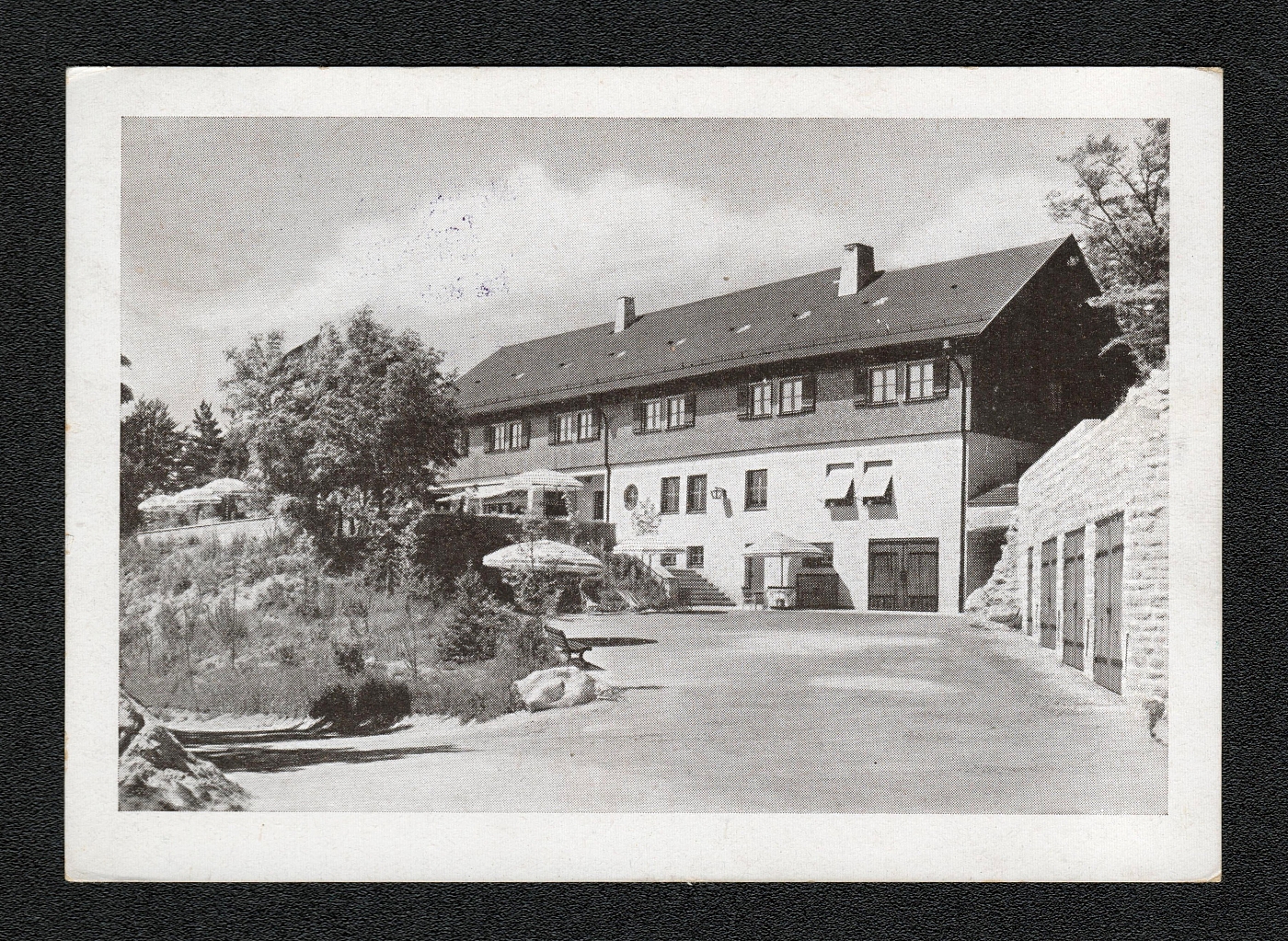
131
-
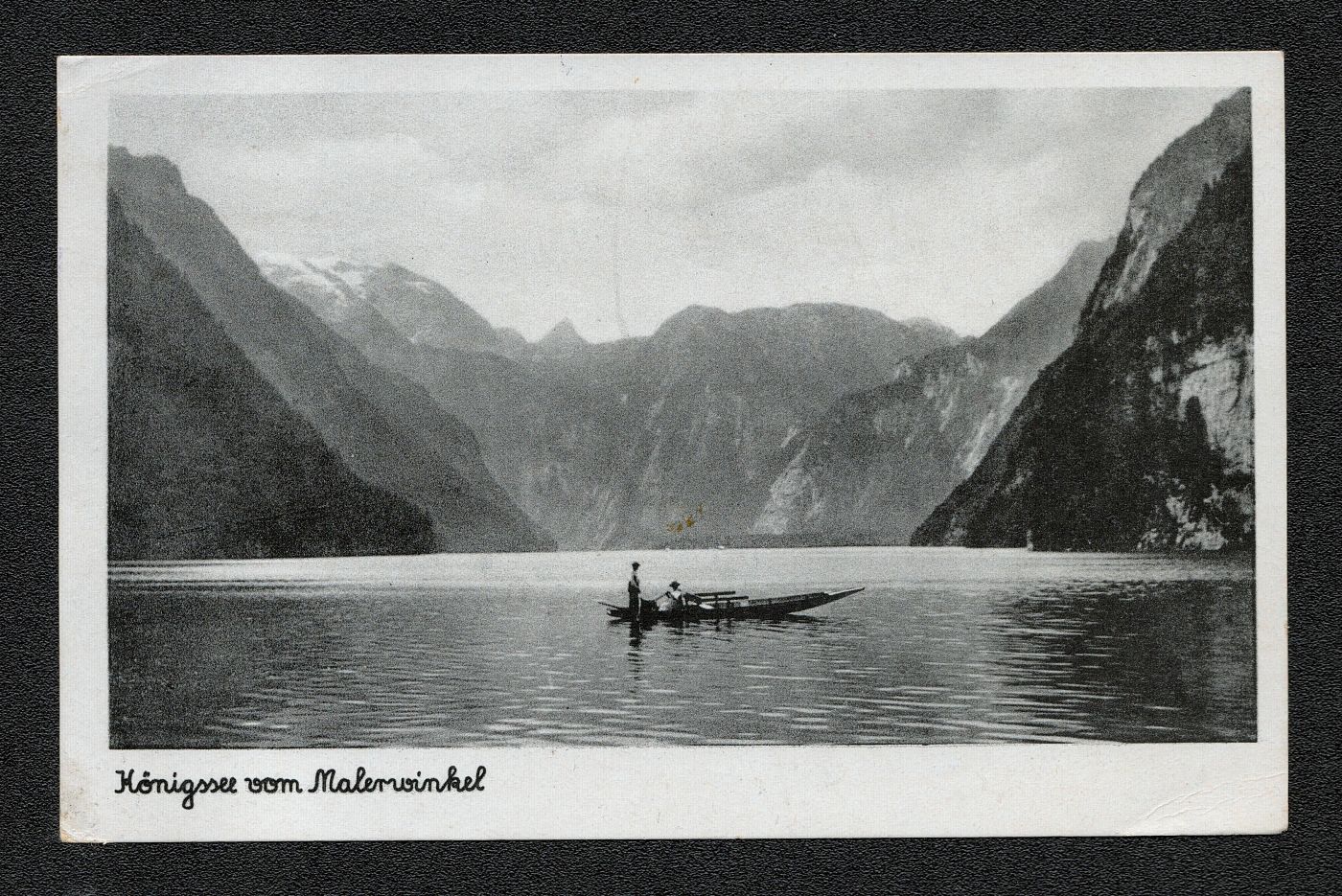
132
$25
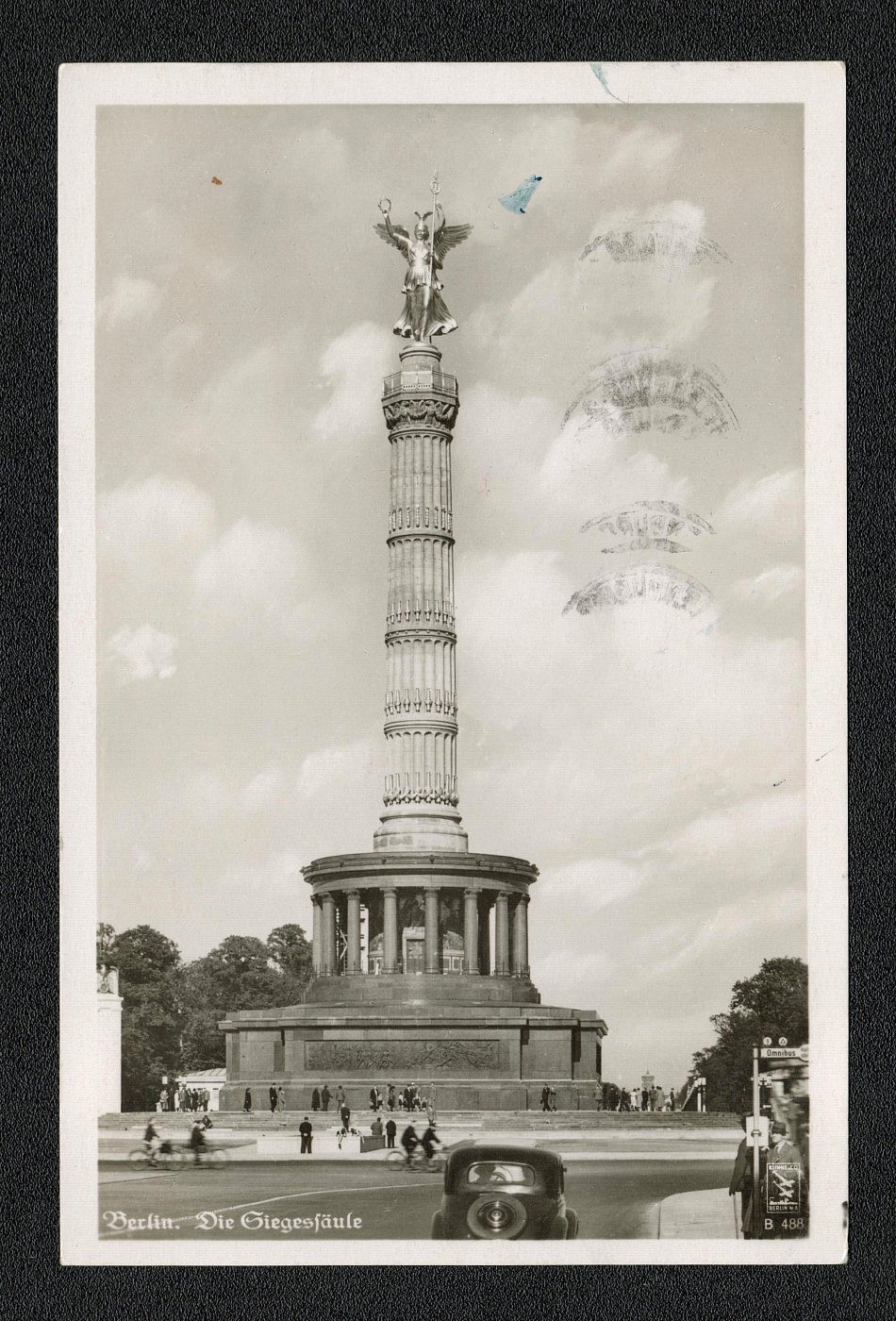
133
$10
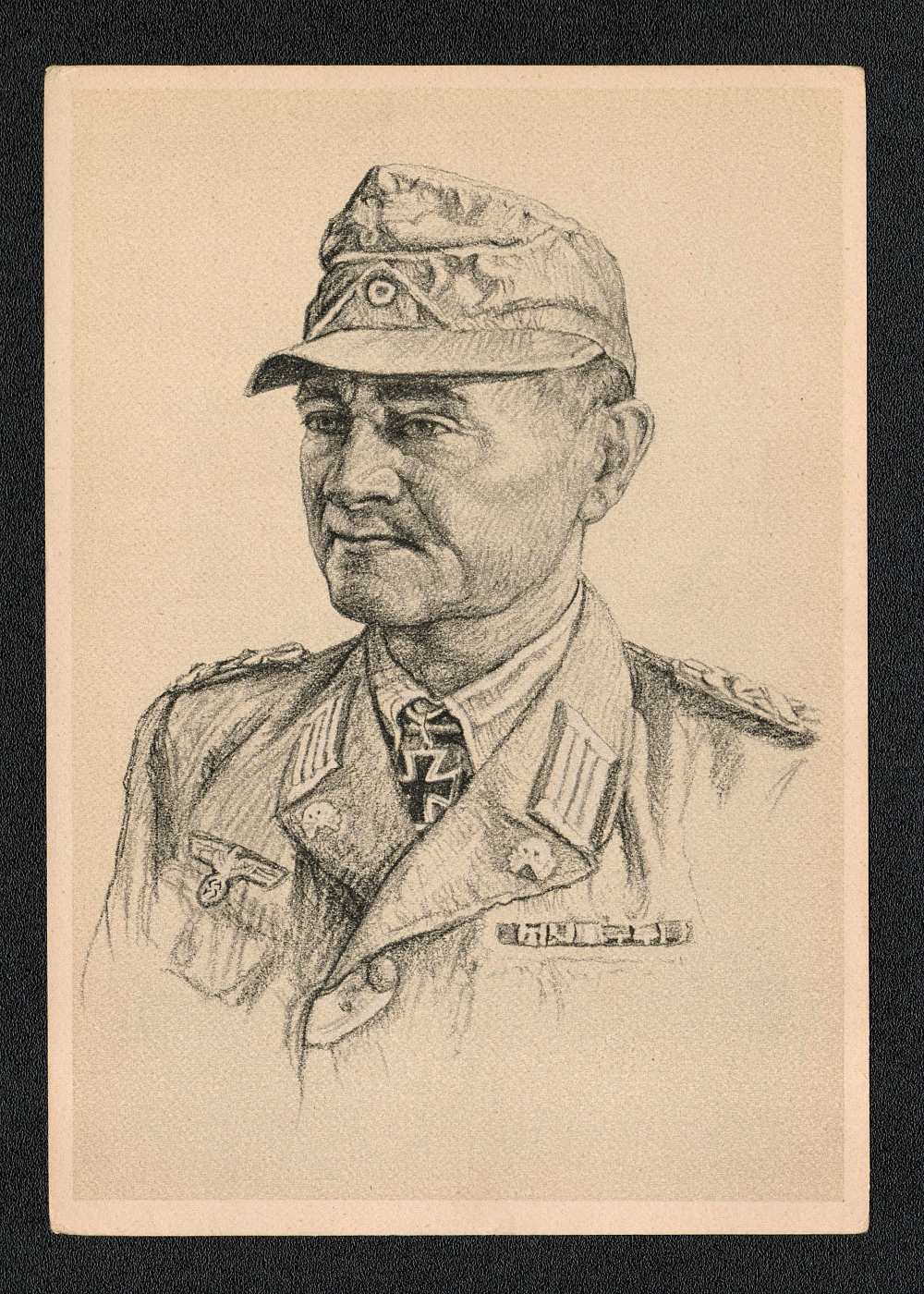
1942 Gerhard Müller. Colonel and commander of a tank regiment deployed in Africa
1942 Gerhard Müller. Colonel and commander of a tank regiment deployed in Africa
Sold for:
$10
134
-
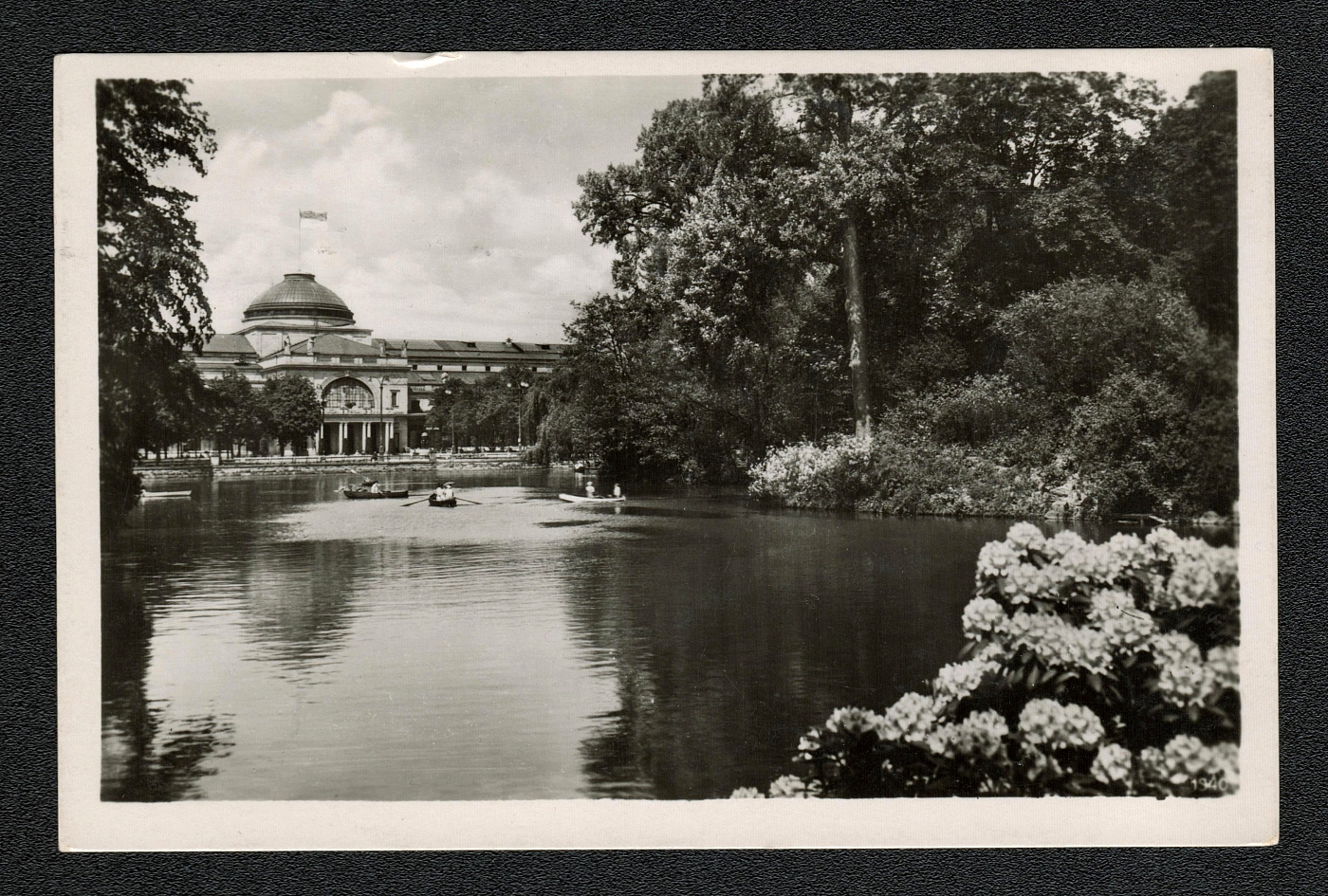
1942 World spa city Wiesbaden Kurhaus, garden view
1942 World spa city Wiesbaden Kurhaus, garden view
Unsold
135
-
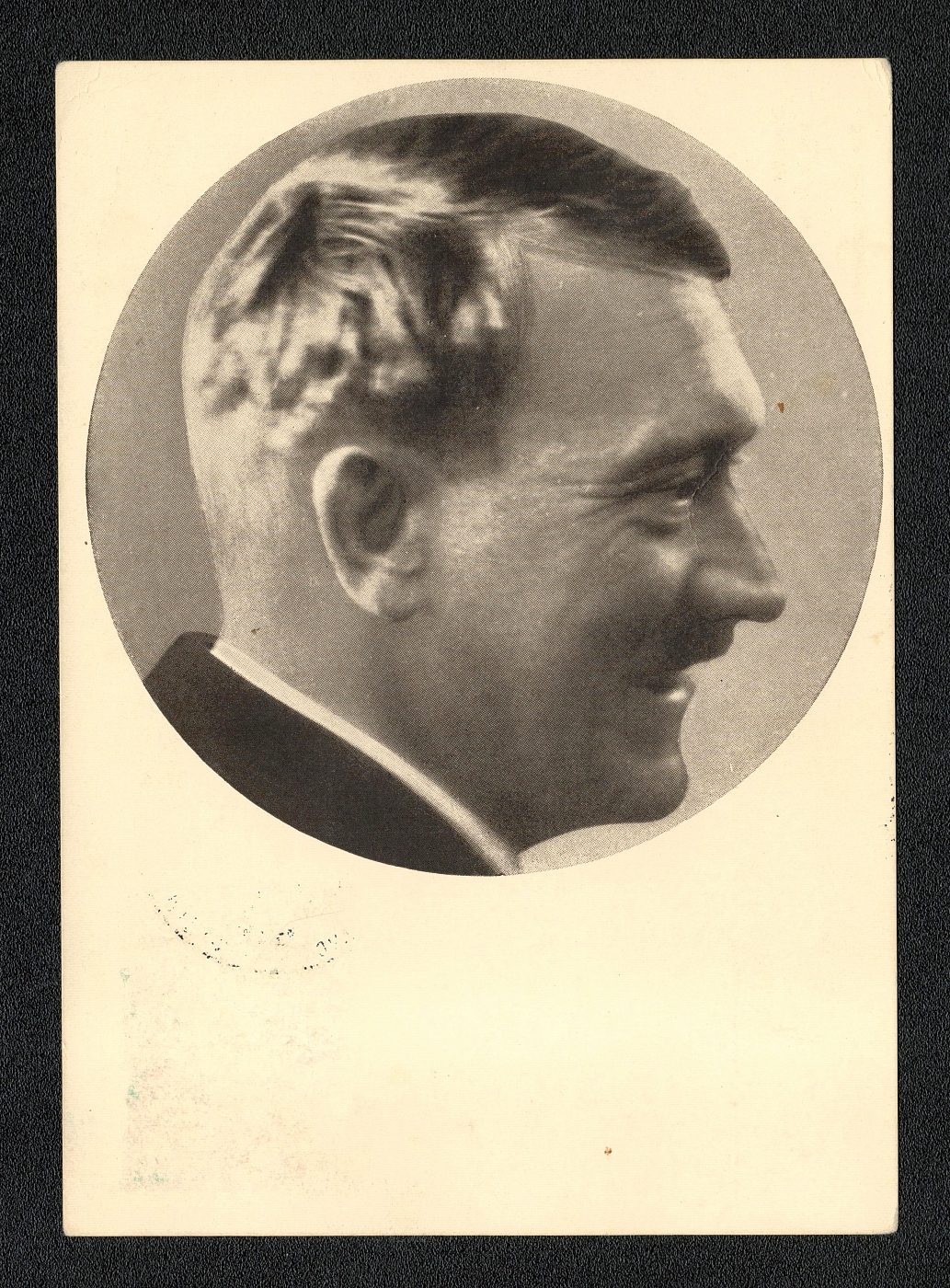
1943 Adolf Hitler. Leader and father of the German people
1943 Adolf Hitler. Leader and father of the German people
Unsold
136
-
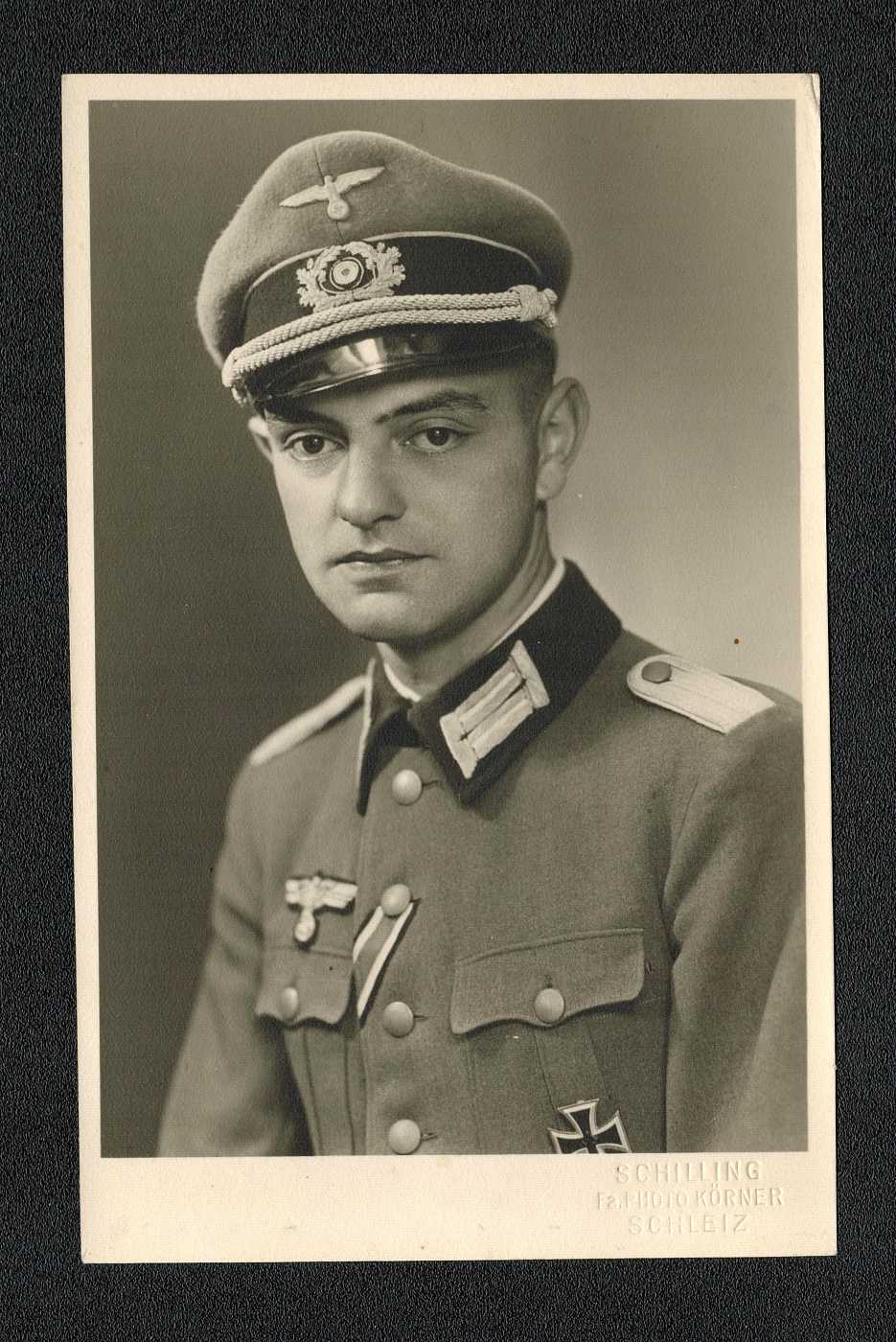
137
$30
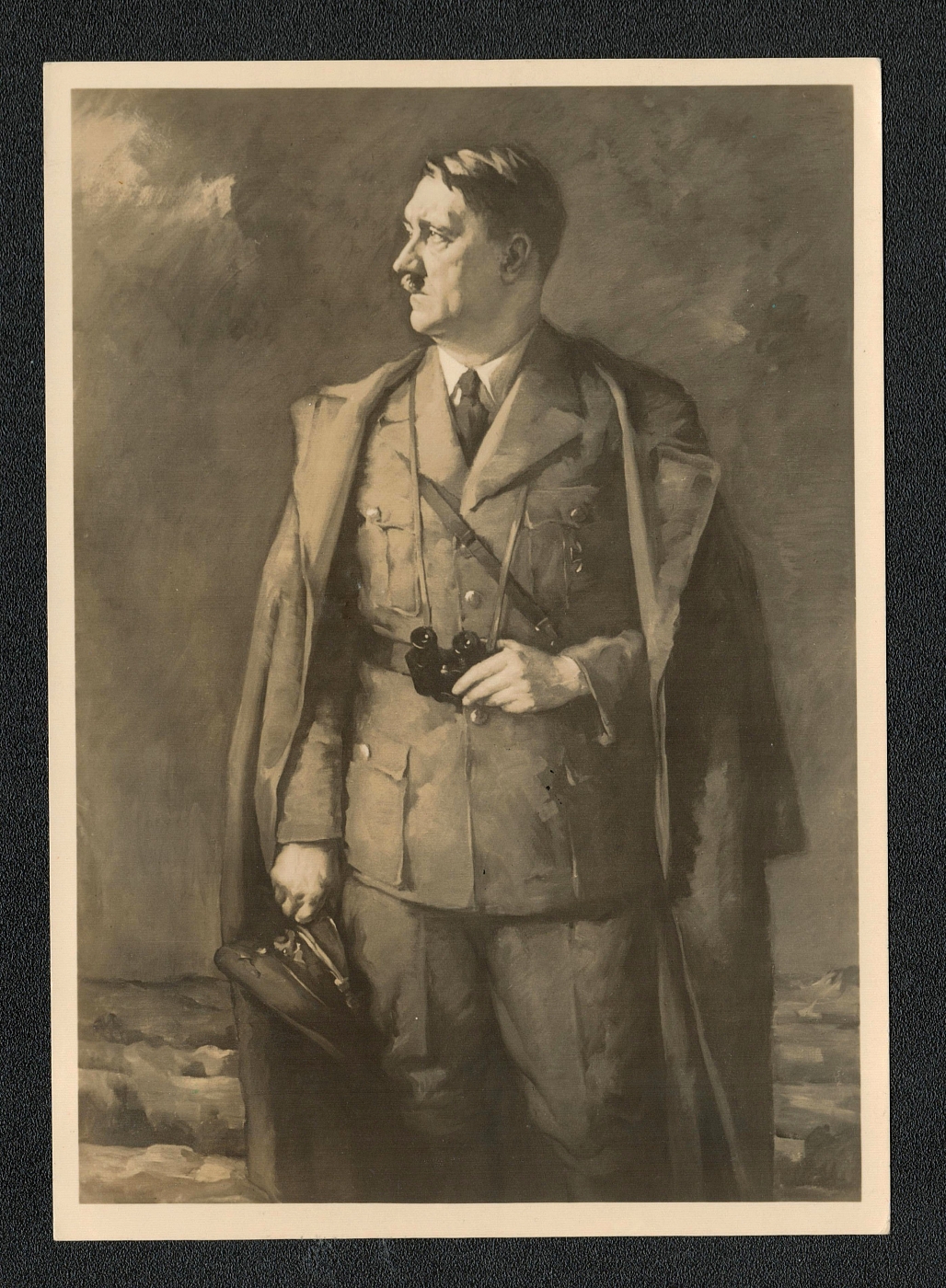
1943 German occupation of Jersey, German and Jersey franking
German and Jersey franking is featured on this cover which was mailed to Germany in 1943 from Jersey. The Channel Island was under German occupation at the time.
Sold for:
$30
138
$10
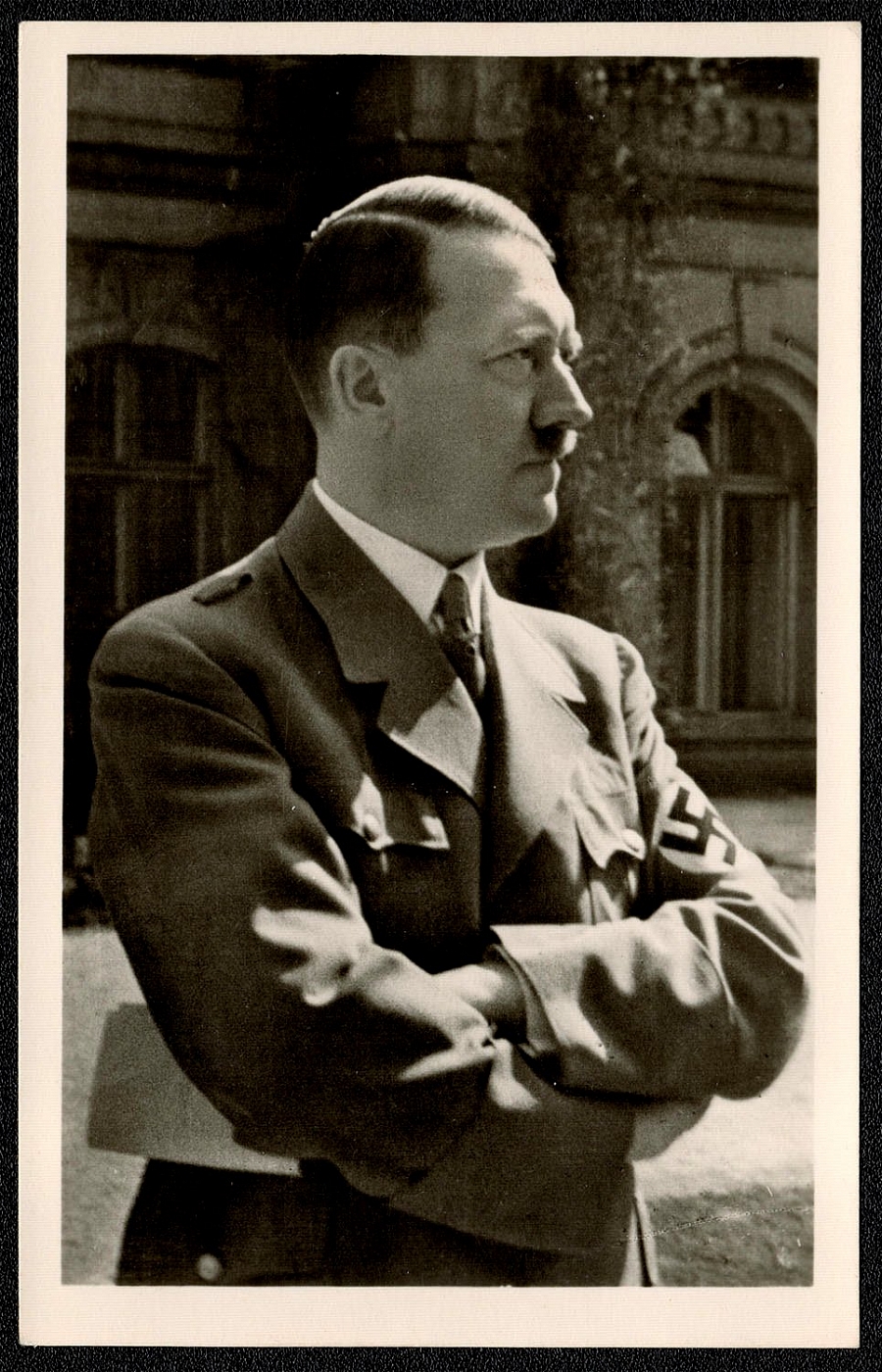
139
$30
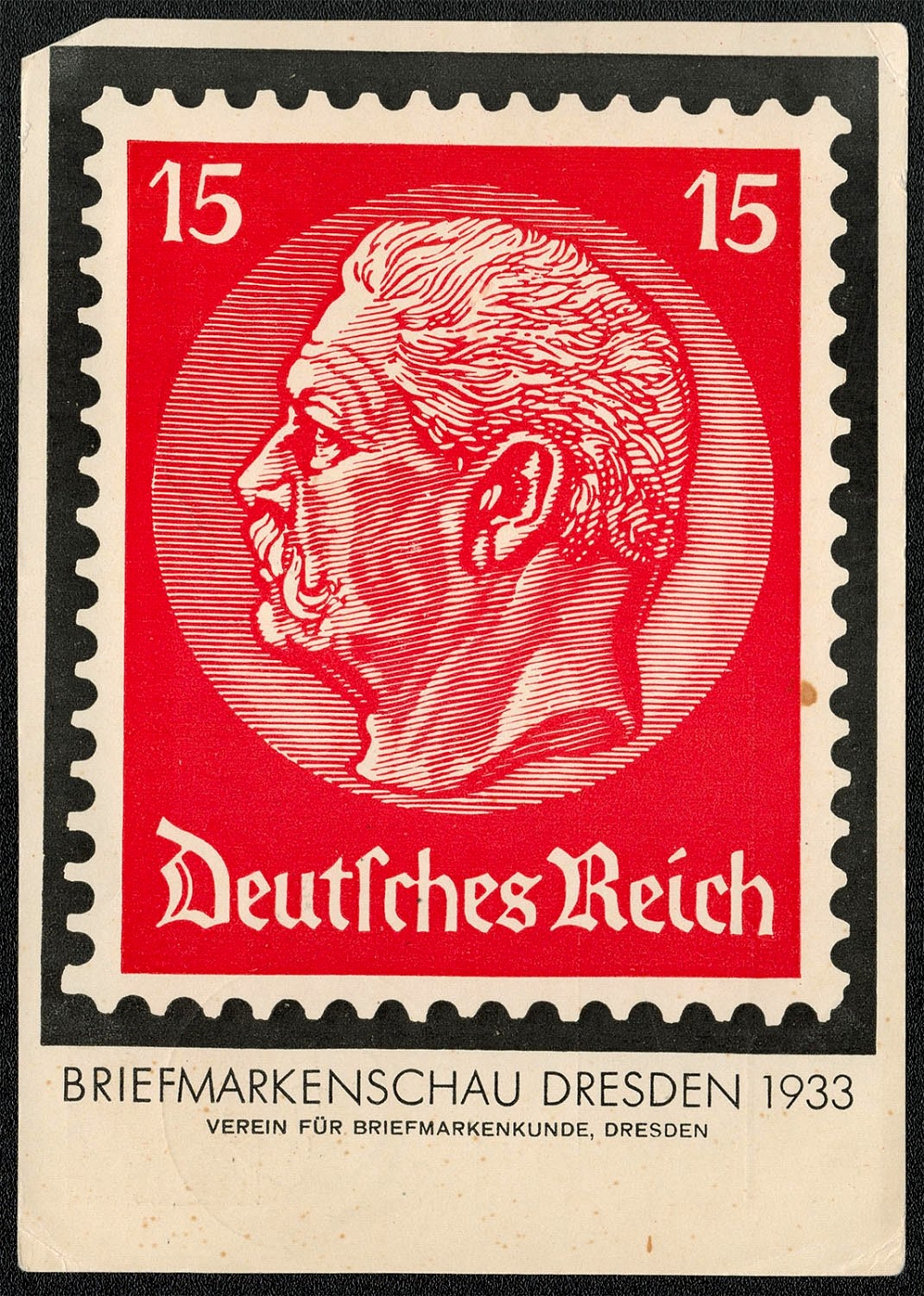
1933 Dresden Philatelic Exhibition Postcard with Special Postmark
There was a plethora of philatelic exhibitions during the Third Reich. Most of them used a special postcard and postmark. The first special postcard of these exhibitions depicts the 15 Pfennig value of the Hindenburg head stamp, and was issued for the Dresden Philatelic Exhibition, (7 to 18 April 1933). The special cancellation used during the exhibition depicts a posthorn. Upfranked with Sc. 398 and the imprinted Sc. 401. Posted 12 April 1933.
Sold for:
$30
140
-
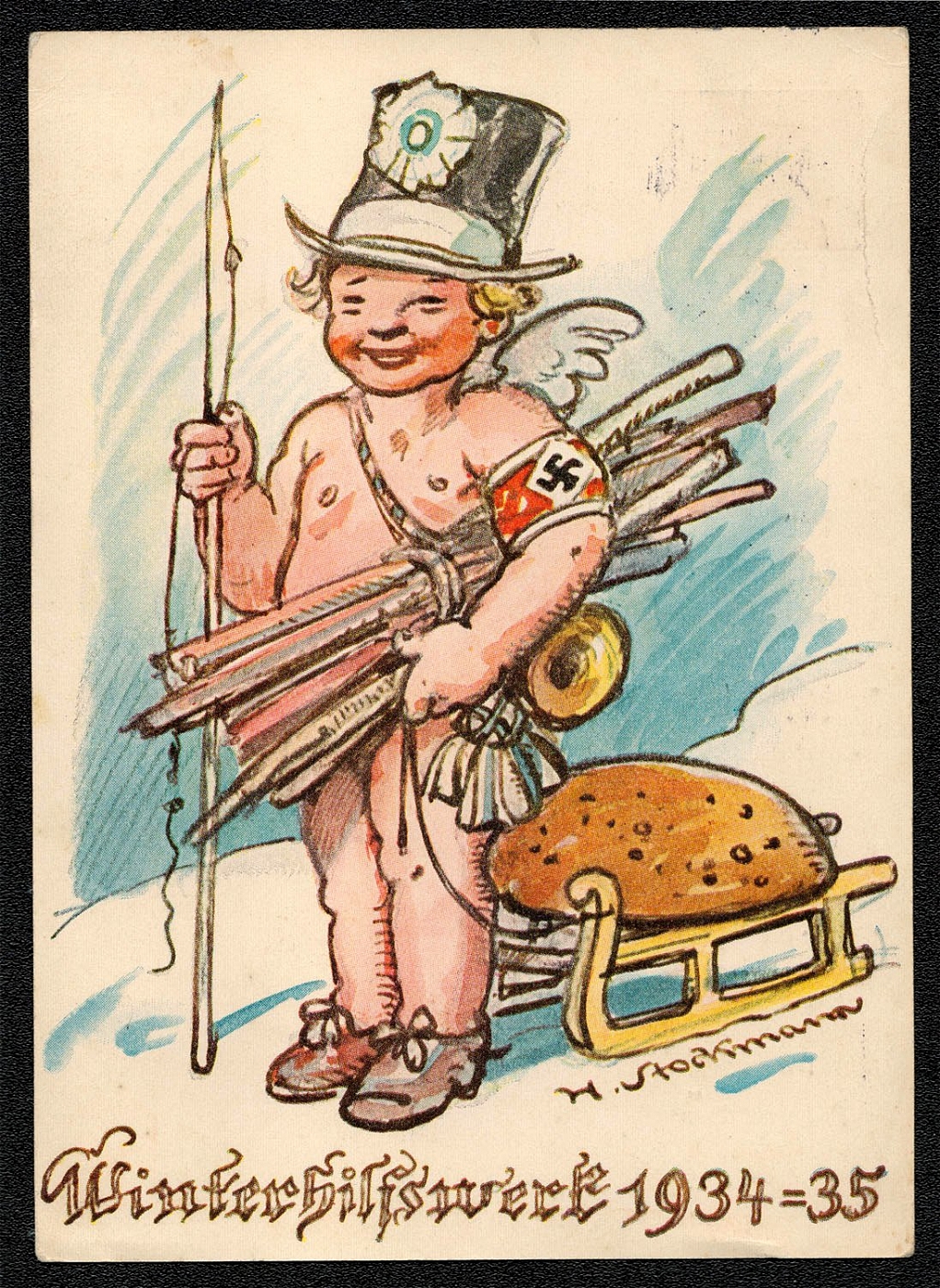
1935 Munich Special Card for the Winter Relief
The date stainp/postal slogan canceling the imprinted 3 Rpf Hindenburg translates: House mailboxes on the first floor hasten delivery. A Sonderkarte fur das Winterhilfwerk (Special Card for the Winter Relief) with an imprinted Hindenburg 3 Rpf. stamp. Issued in the fall of 1934 by the Gau Miinchen-Oby. Civil Servants Collection Office and the Munchen Postal Administration. The card was designed by H. Stockmann and printed by several Munchen firms among them Deutsche Kunst- und Verlagsdruckerei and Brend’amour, Simhart & Co.
Unsold
141
$20
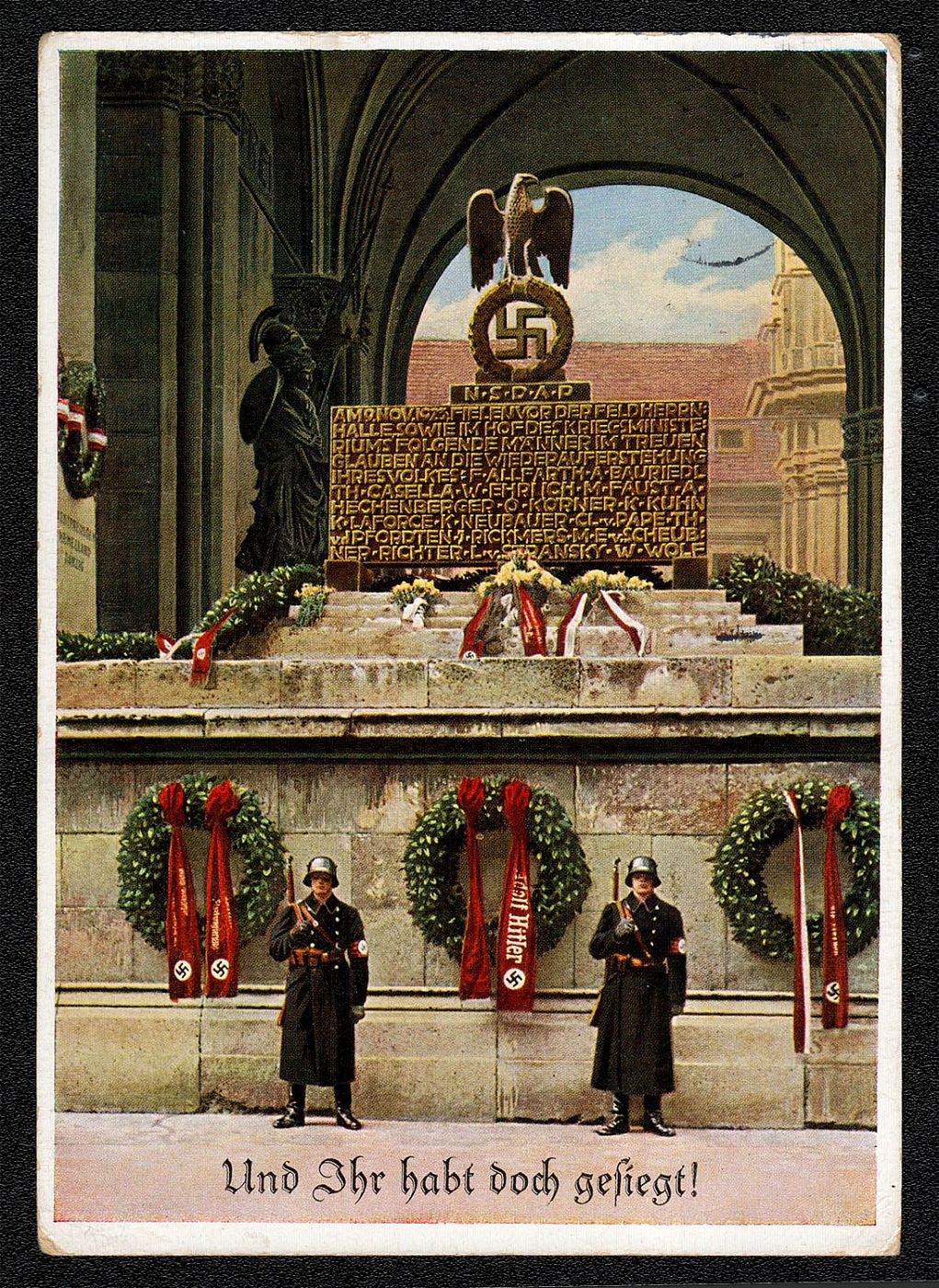
"1935 The Feldherrnhalle Memorial in Munich honoring the fallen of 9""' November 1923."
"1935 The Feldherrnhalle Memorial in Munich honoring the fallen of 9""' November 1 Mailed from Postamt Munchen 2 on 2 June 1935. The Werbestempel (publicity slogan cancellation) promotes the 1935 Miinchen Summer Festival."
Sold for:
$20
142
-
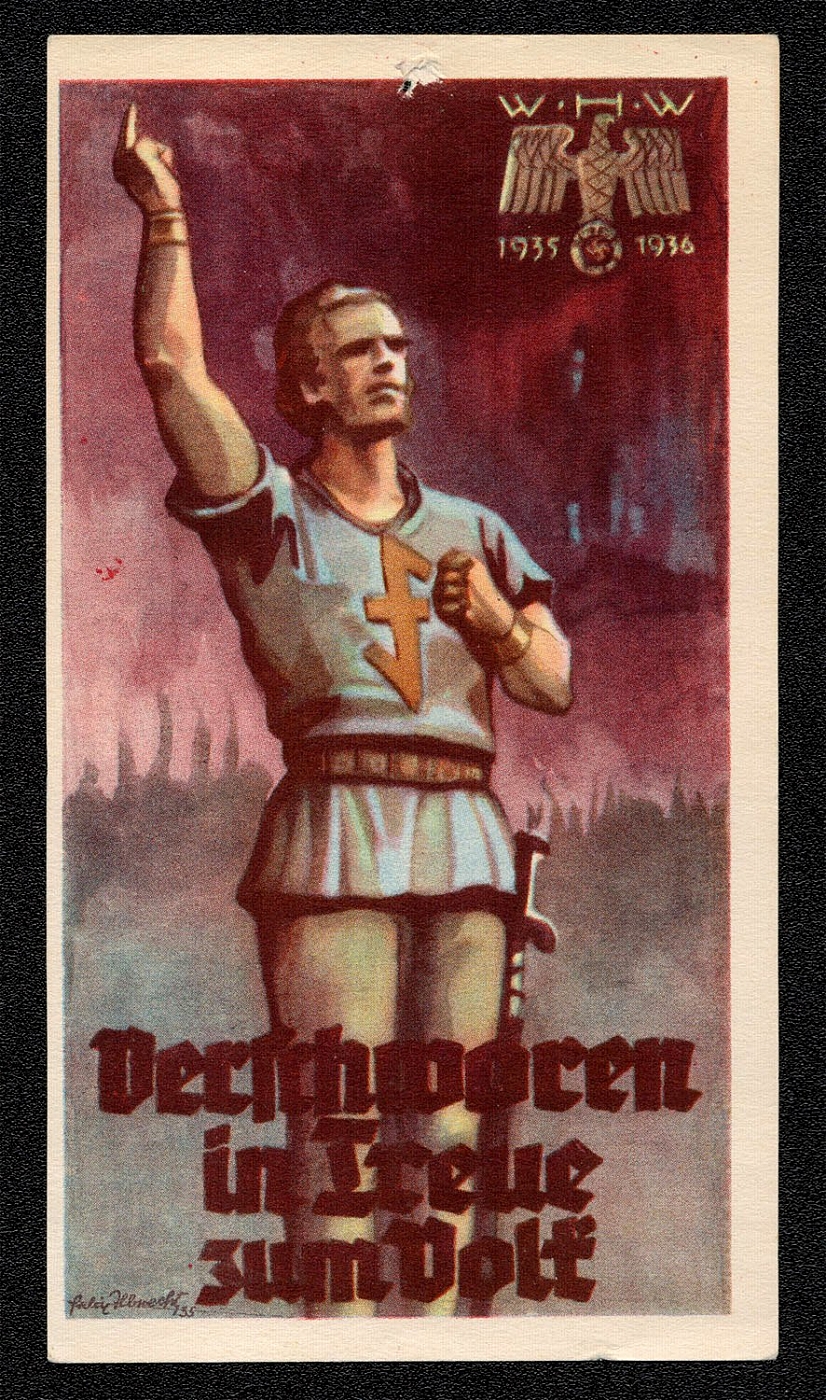
1935 Winter Relief of the German People
The Winterhilfswerk (Winter Relief Agency) came into being during the crisis winter of 1931-32 to provide the needy with money, groceries, meals, clothing, and fuel. It was jointly maintained by private welfare associations, including the German Red Cross. However, a proclamation by Hitler and Goebbels on September 13, 1933 introduced the first National Socialist WHW for the winter of 1933-1934. Although officially proclaimed as a broad-based organization of all welfare resources, in reality the WHW was subordinate to the NS Volk Welfare agency (NSV). The WHW was granted its own legal rights in 1936, but the ties between it and the NSV remained evident.
Unsold
143
-
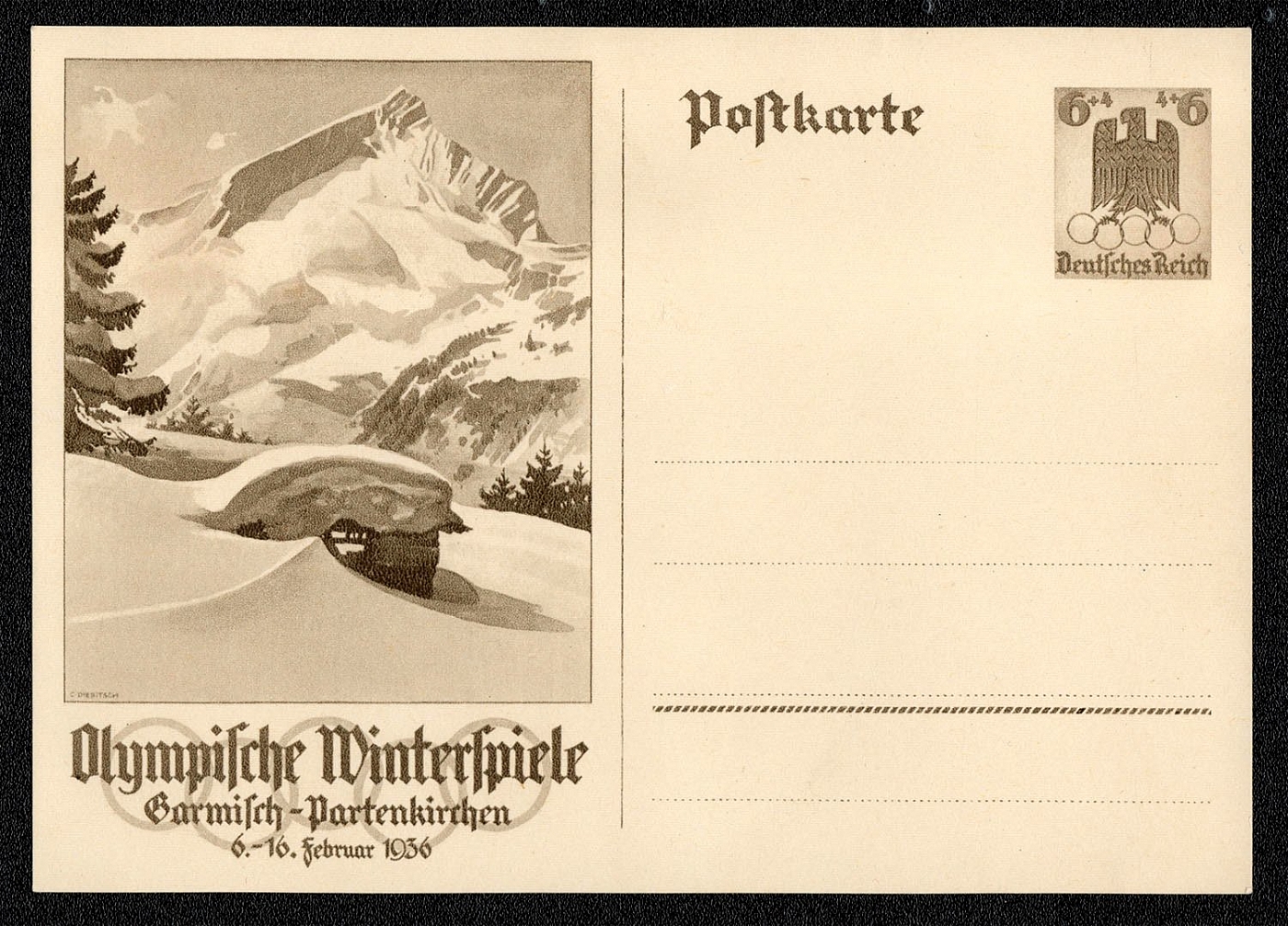
1935 Winter Olympics Depicted is an Alpine peak
Depicted is an Alpine peak. Stamp design (Reichsadler with Olympic Rings) by Karl Diebitsch of Miinchen. Issued 25 November 1935. valid until 30 June 1937.
Unsold
144
-
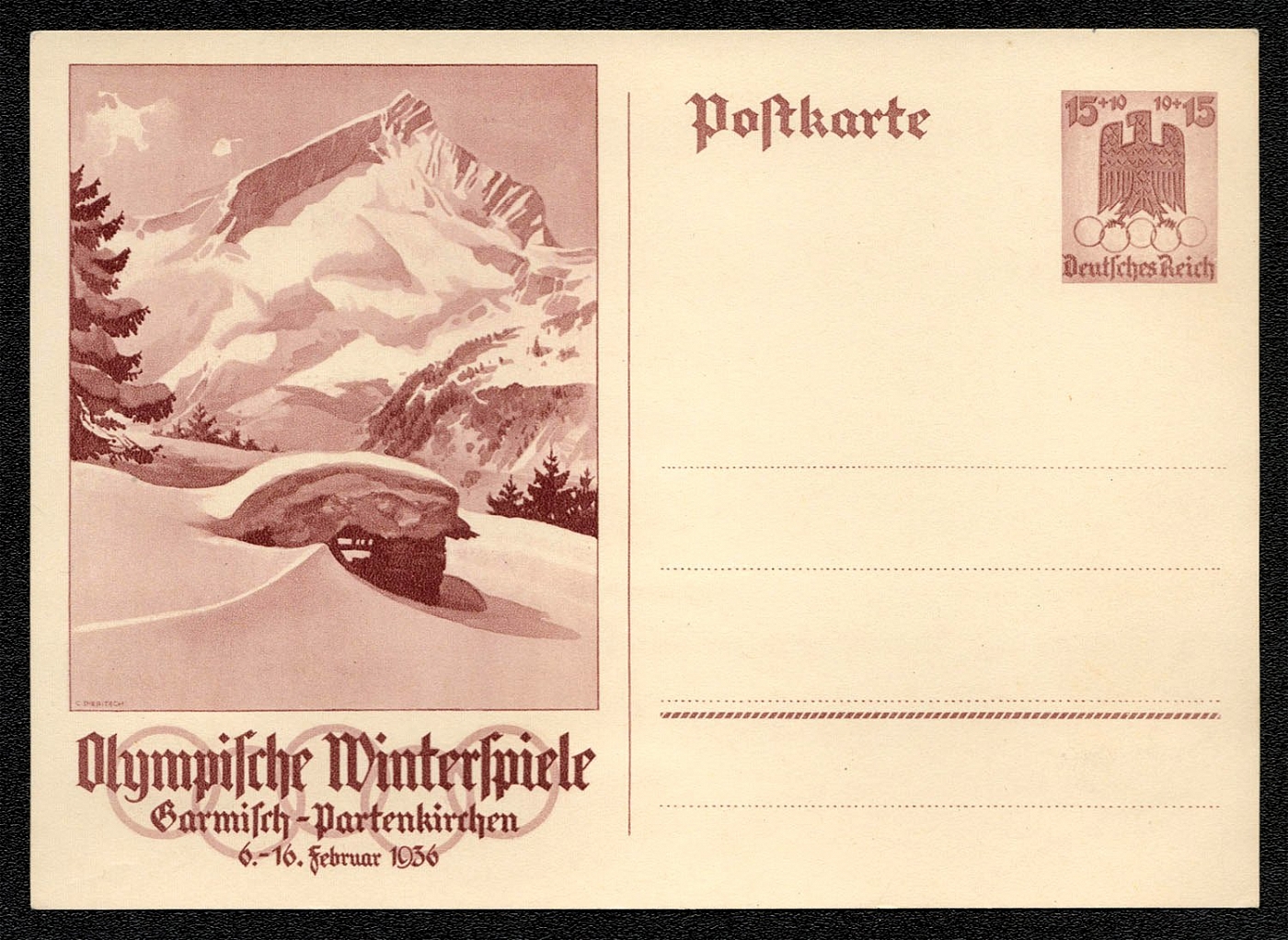
1935 Winter Olympic Games in Garmisch-Partenkirchen Depicted is an Alpine peak
Depicted is an Alpine peak. Stamp design (Reichsadler with Olympic Rings) by Karl Diebitsch of Miinchen. Issued 25 November 1935. valid until 30 June 1937.
Unsold
145
-
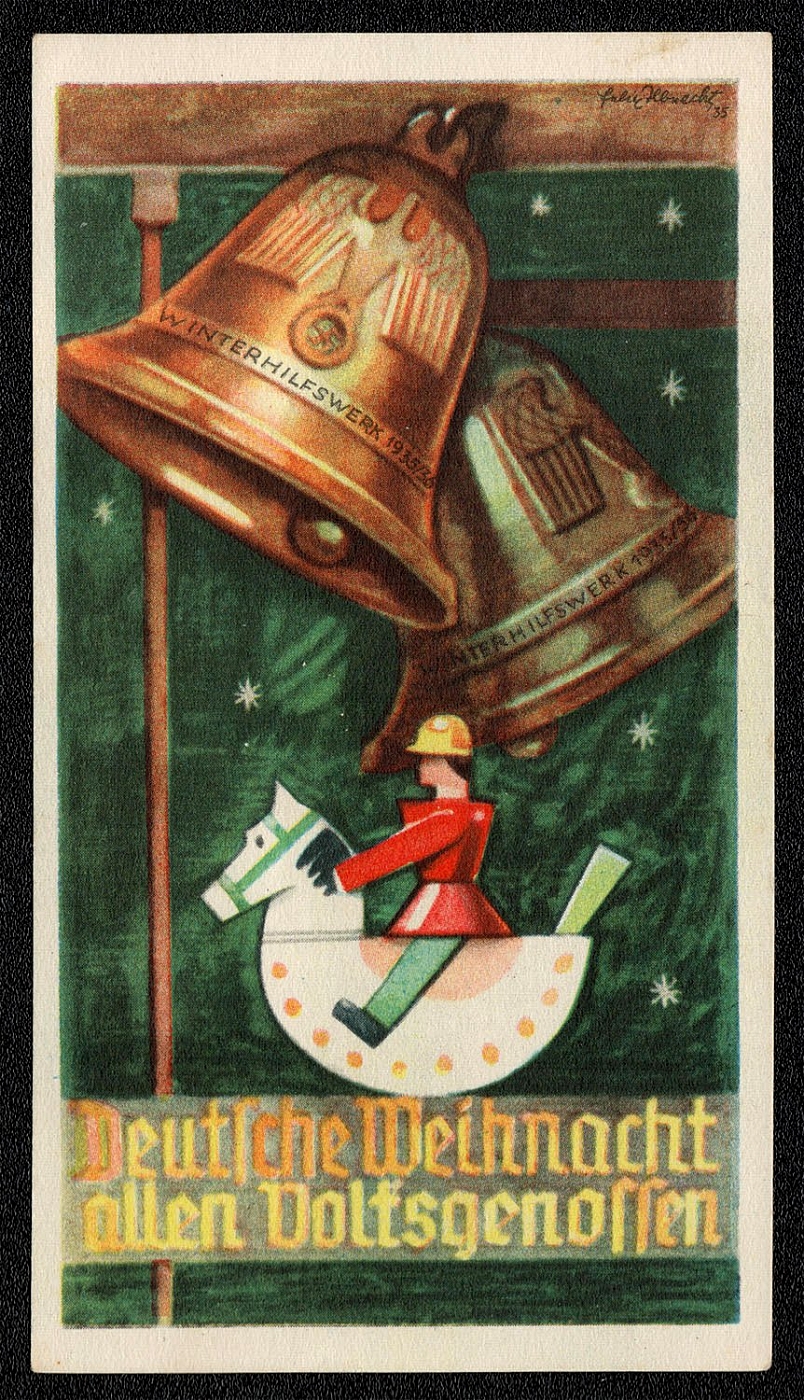
1935 All Folk enjoy a German Christmas
In addition to street and house-to-house collections, there were obligatory wage and salary deductions, collection cans in stores for a “winter pfennig,” and a Reich Winter Relief Lottery. The donation revenues from 1933-1934 to 1938-1939 amounted to 2.5 billion RM. The allocation of the support was carried out in cooperation with government social service agencies through the regional offices (Bezirksstelleri). The originally very wide range of recipients was soon narrowed to politically, racially, and biologically “worthy persons” (wiirdige Personeri).
Unsold
146
-
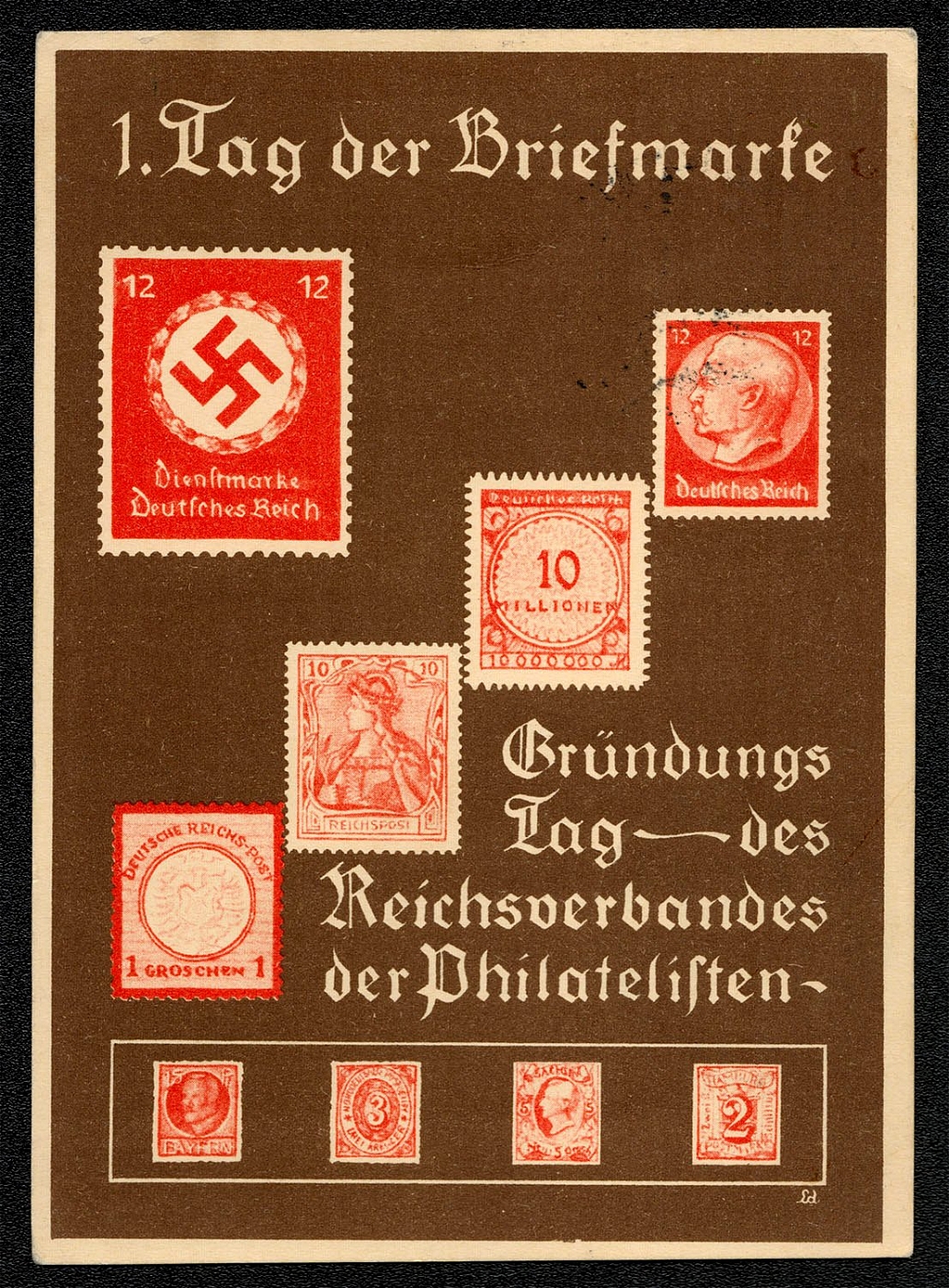
1936 Day of the Postage Stamp, Establishment Day - The Reich’s Federation of Philatelists
Scott No. 467 tied to souvenir postal card with cancellation commemorating Postage Stamp Day and Establishment of the Reich’s Federation of Philatelists Day. Posted 7 January 1936 in Berlin W62.
Unsold
147
$45
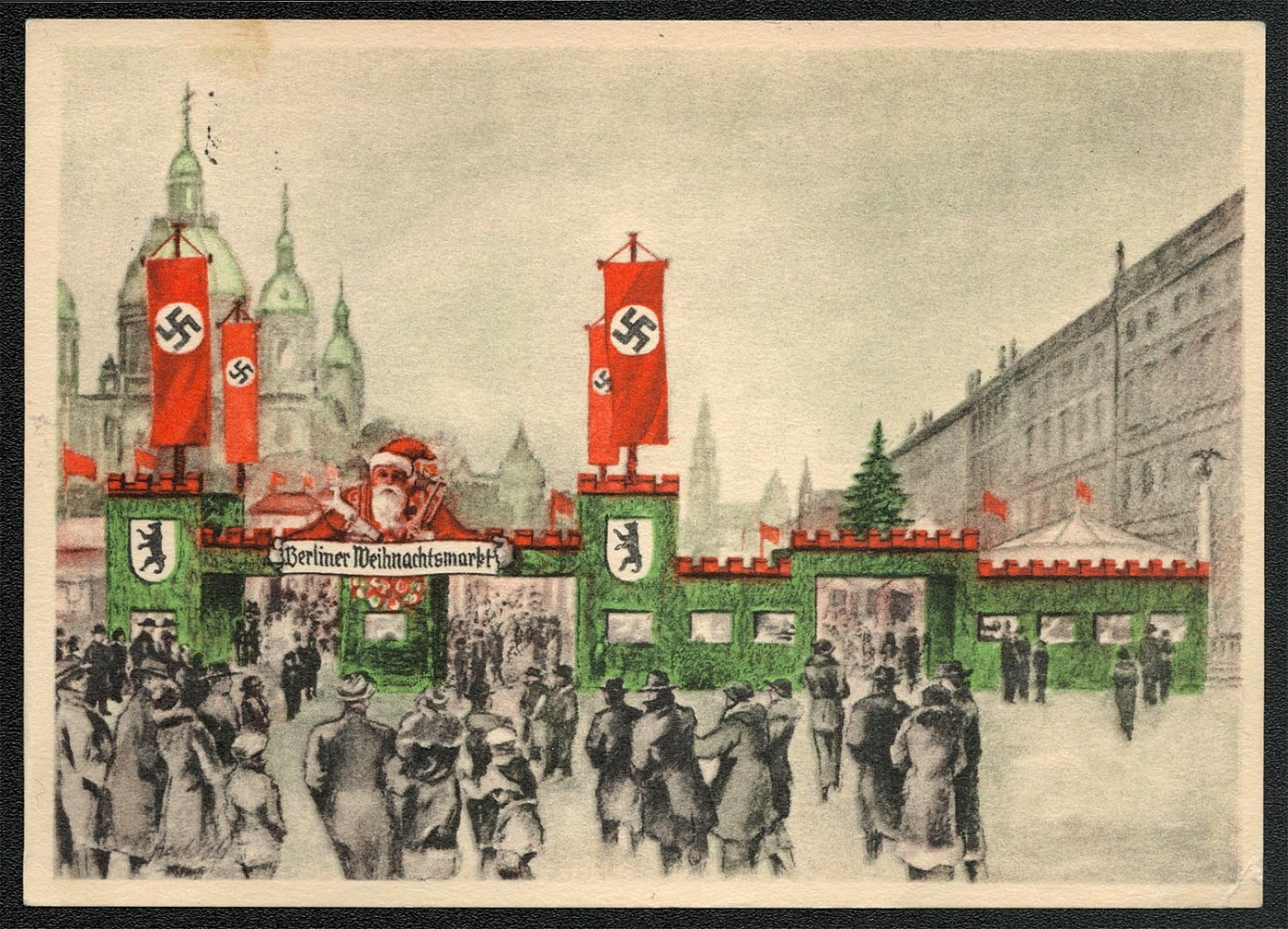
1936 Berlin Christmas Market
Souvenir post card issued to publicize the Berlin Christmas Market postally used 20 December 1936. Franked with Scott 419 and mailed from Berlin C 2.
Sold for:
$45
148
$25
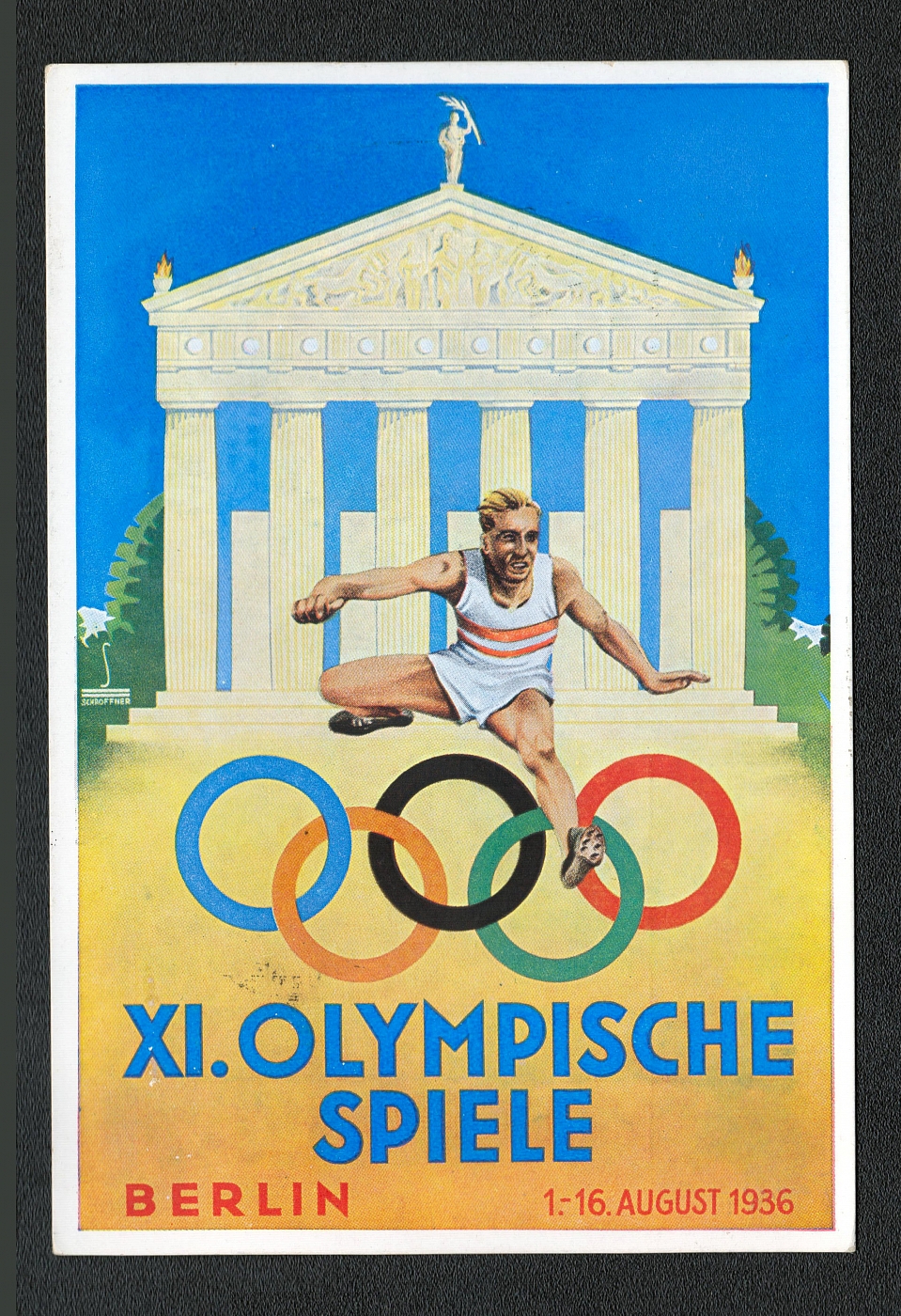
149
-
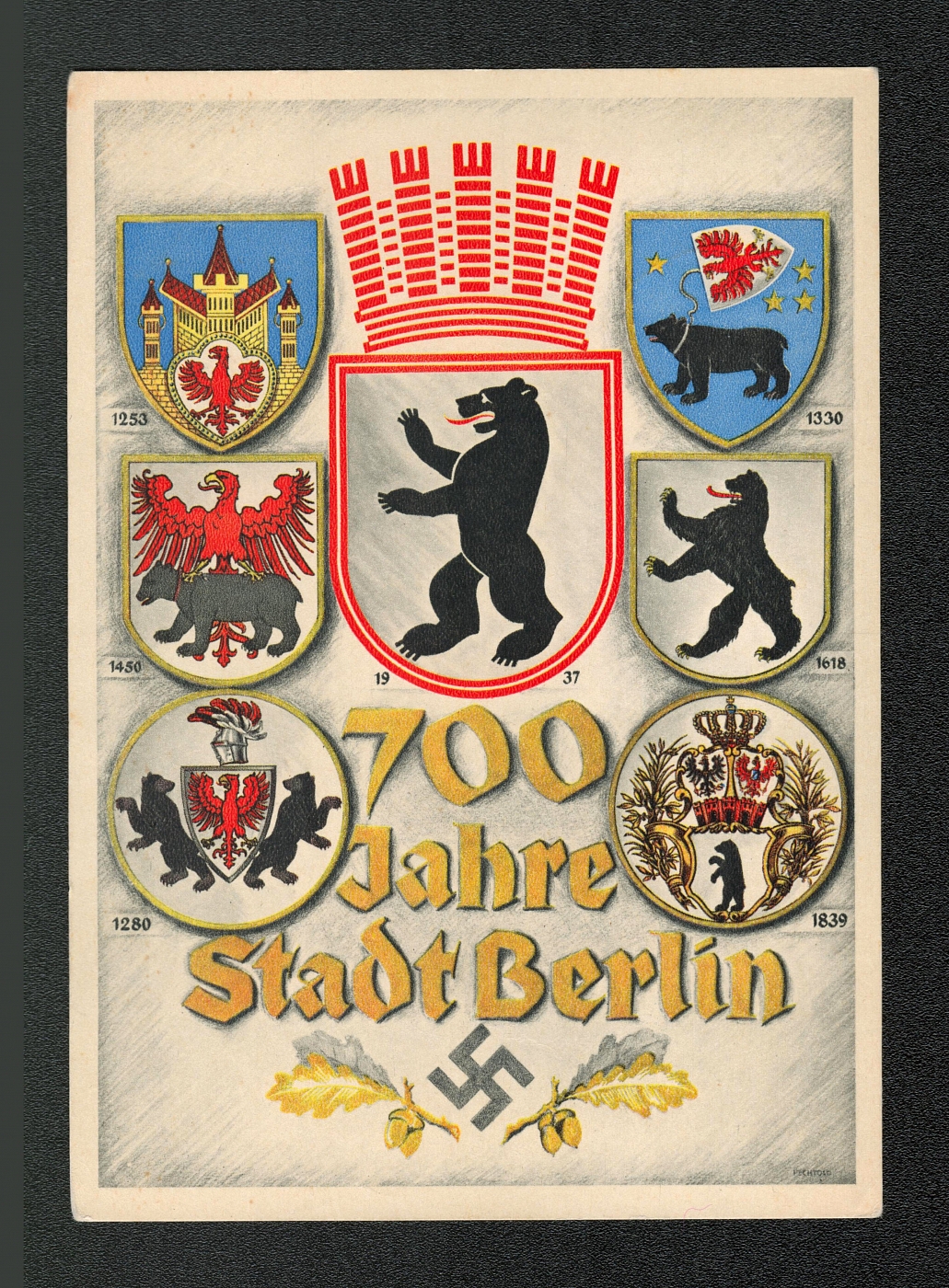
150
$20
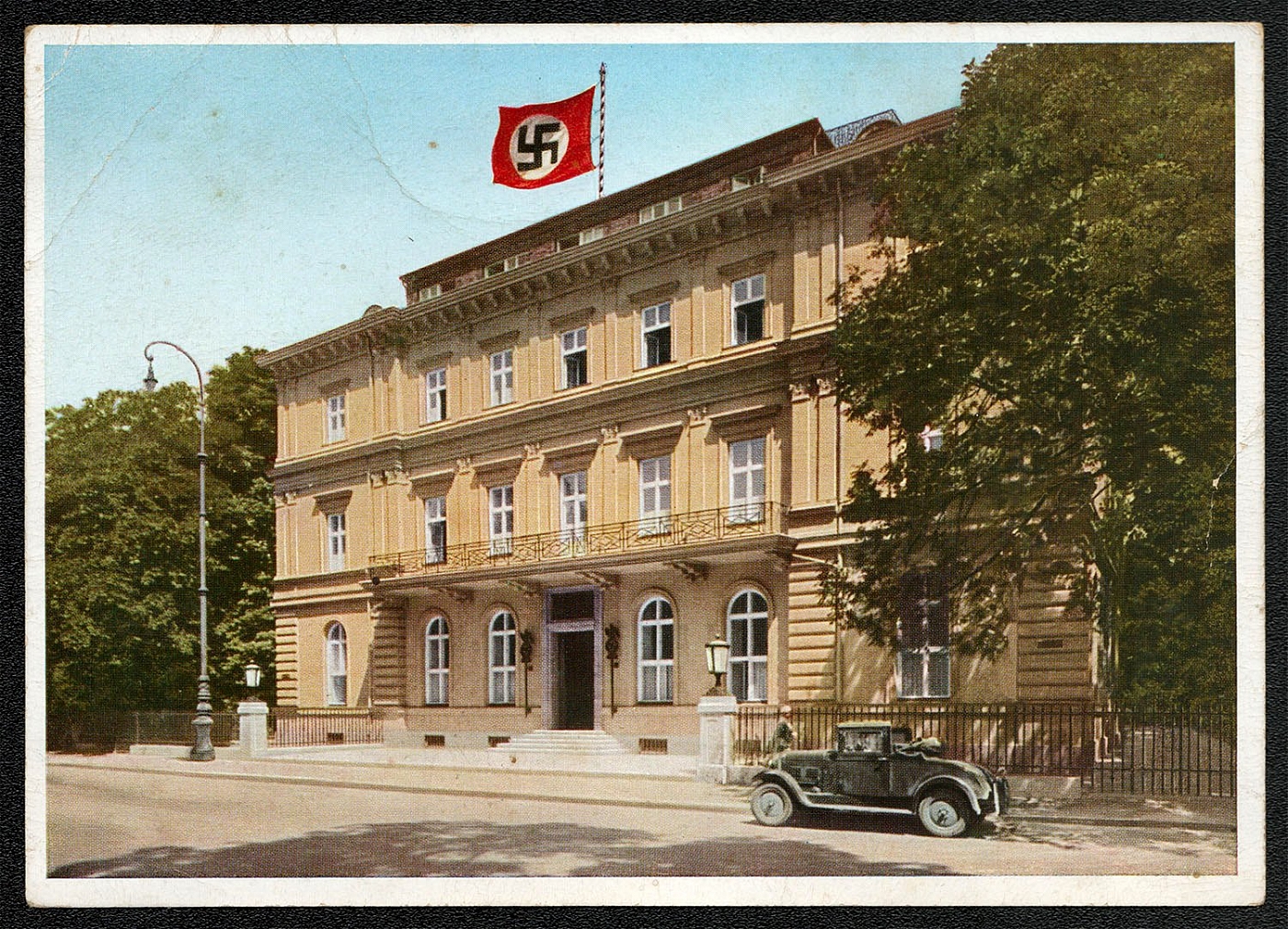
151
$20
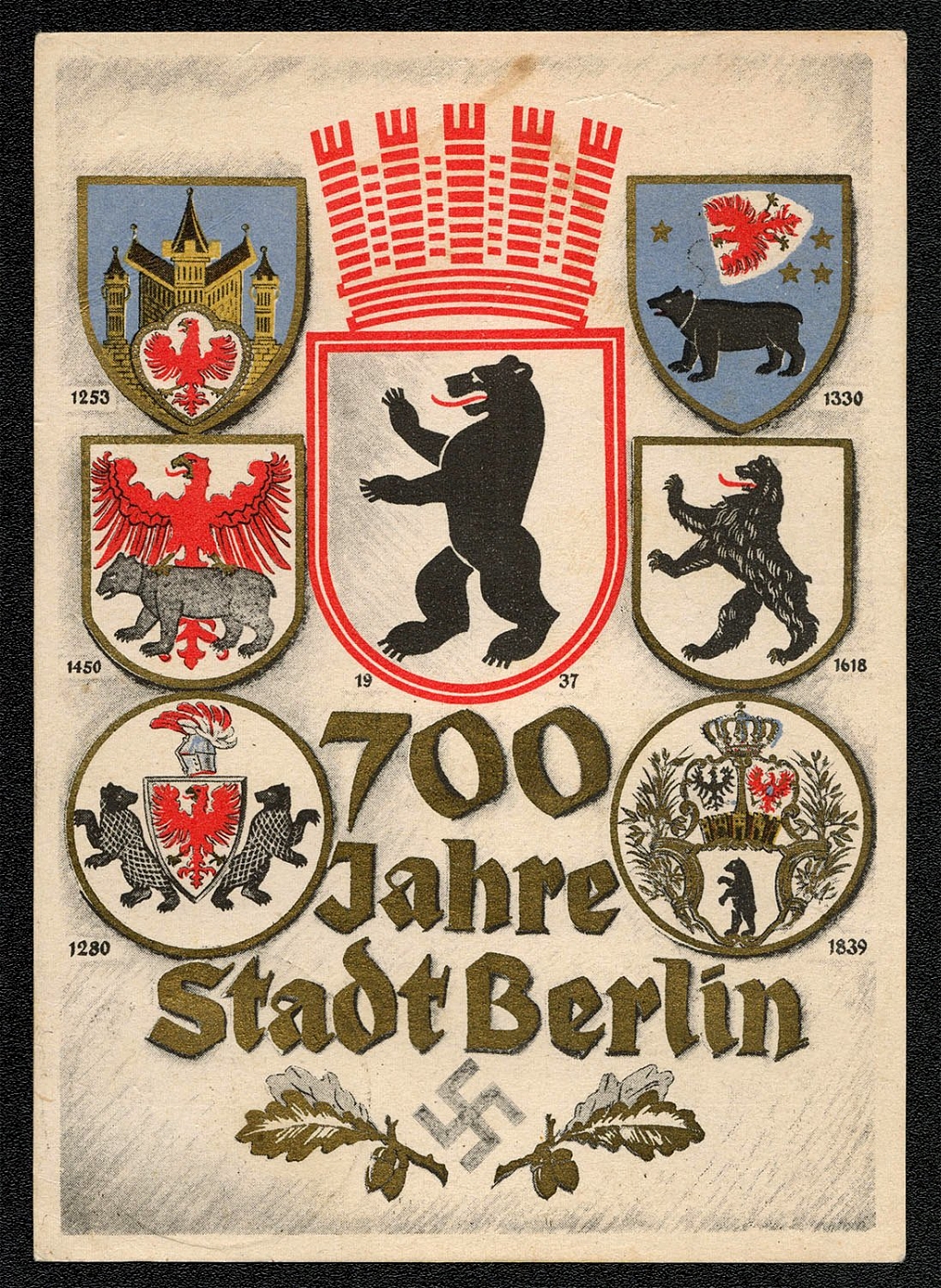
1937 Official Festival Post Card commemorating Berlin’s 700 years as a city.
Official Festival Post Card commemorating Berlin’s 700 years as a city. Depicted are the more prominent municipal Wappenschilde (coats of arms) from 1253 to 1937. Postally used on 16 August 1937. The card carries unusual dual franking: Sc 419 (4:00 PM in Berlin-Treptow) and Sc 421 (11:00 PM in Berlin N4). The 10 Rpf increase, of course, is because the card was addressed to Sweden. The question remains, however, was the additional postage applied gratis by postal personnel at Berlin N4 some seven hours after the card was posted in Berlin-Treptow? The commemorative cancellation publicizes the 700 year celebration of the founding of the City of Berlin, 15 August - 5 September 1937, and apparently, the opening of the 1937 commercial fishing season!
Sold for:
$20
152
$25
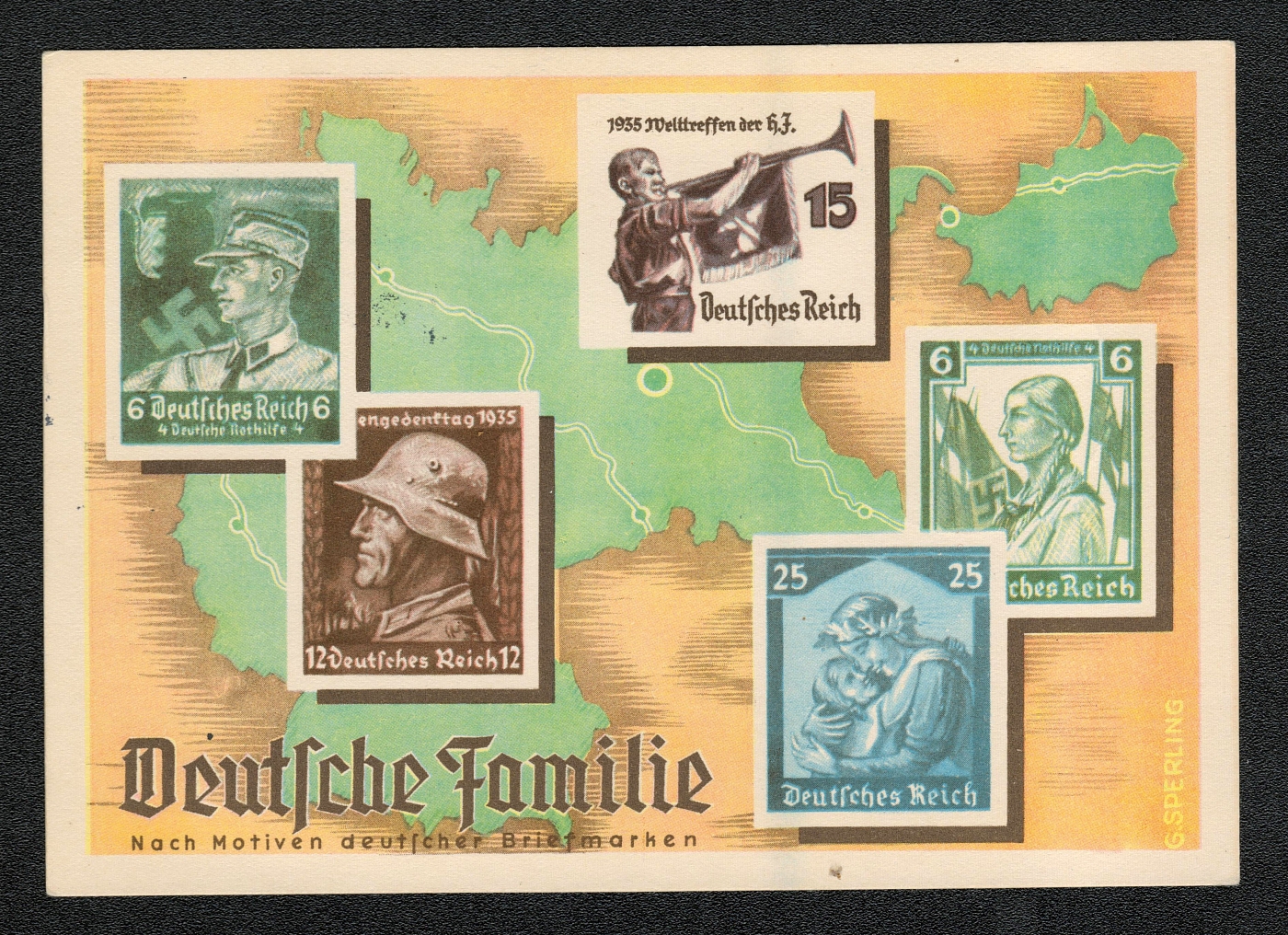
153
$35
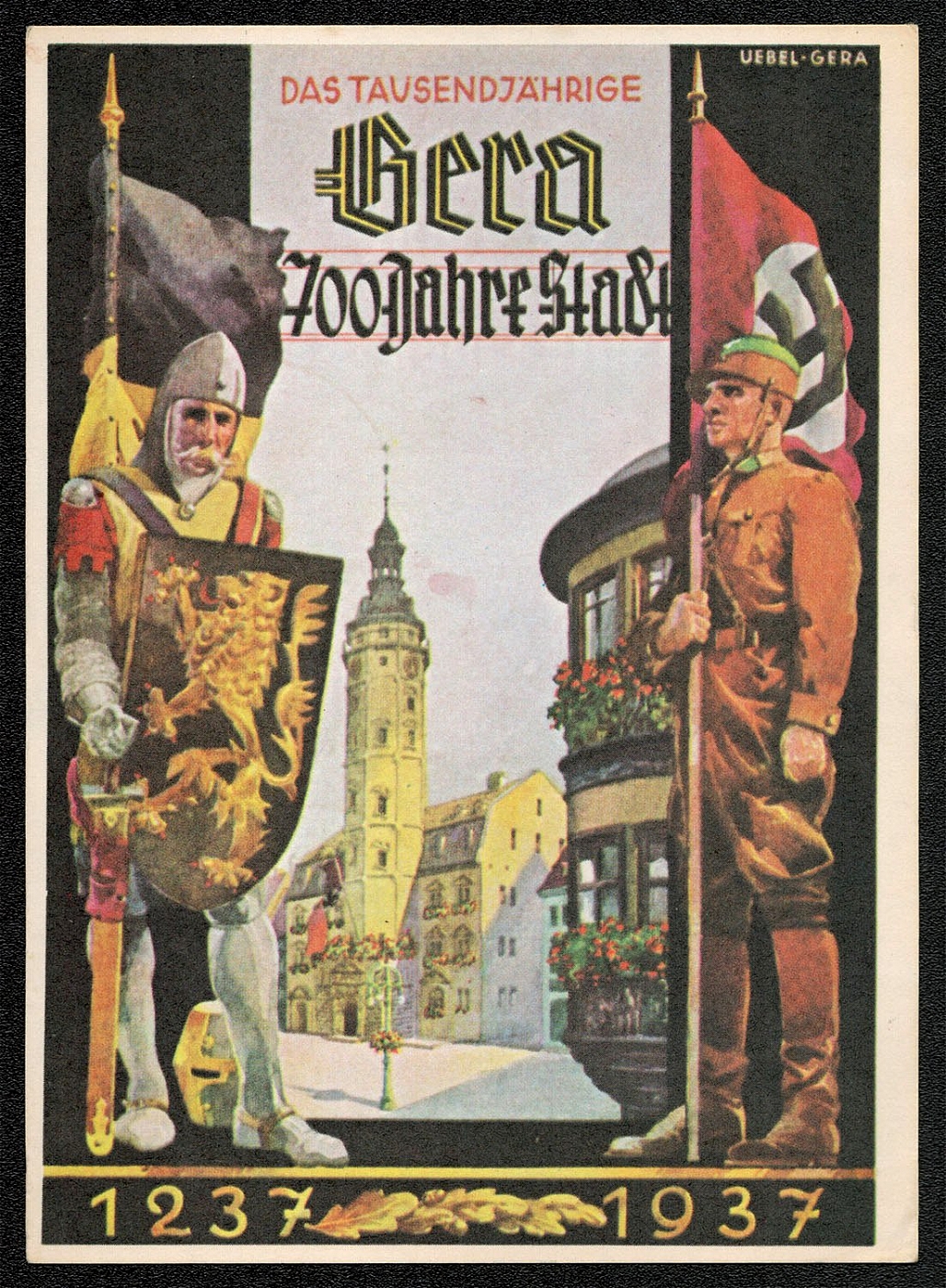
1937 Official Gera City Festival Postcard celebrating Gera’s 700 years
Gera 700 Jabre Sladl 1237- 1937 An unused art card printed by Ernst Giinther, G.M.B.H., Gera Gera, the capital of the former principality of Reuss jiingere Linie, was a busy manufacturing town of 83,000 in 1937. It is located in northern Germany about 35 miles west of Chemnitz. Depicted is a medieval knight and an SA-Mann on this card celebrating Gera’s 700 years as a city.
Sold for:
$35
154
-
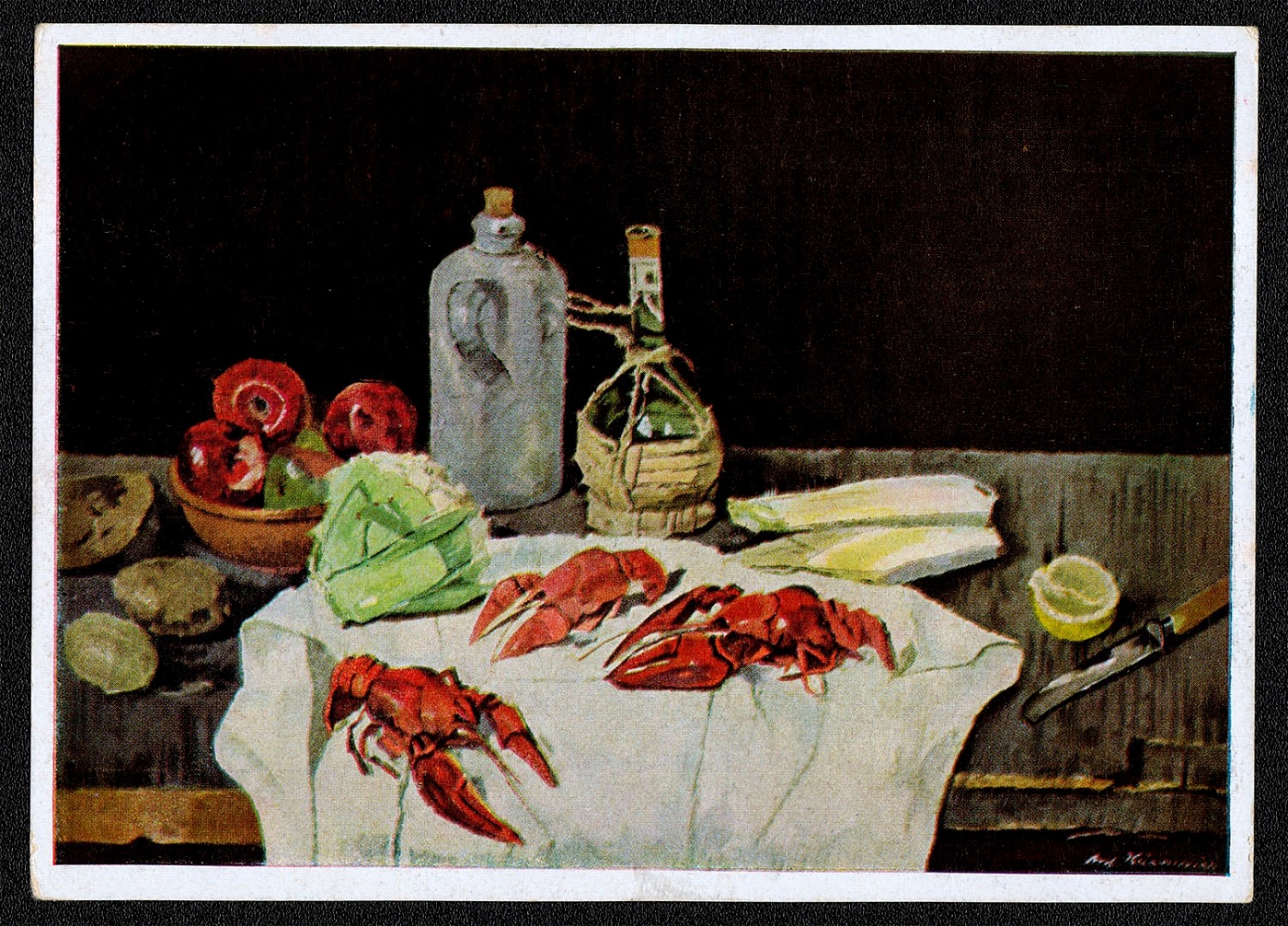
1937 Munich House of German Art Anton Kurmaier “Lobster Still Life”
“If they do not believe in the reality of such impressions but seek on other grounds to impose upon the nation by this humbug, then it is a matter for a criminal court. There is no place for such works in this building. The industry of architects and workmen was not spent to house canvases which were daubed over in five hours, the painters being assured that the boldness of the pricing could not fail to produce its effect, that the canvas would be hailed as the most brilliant lightening-birth of a genius. No, they can be left to cackle over each other’s eggs!”
Unsold
155
-
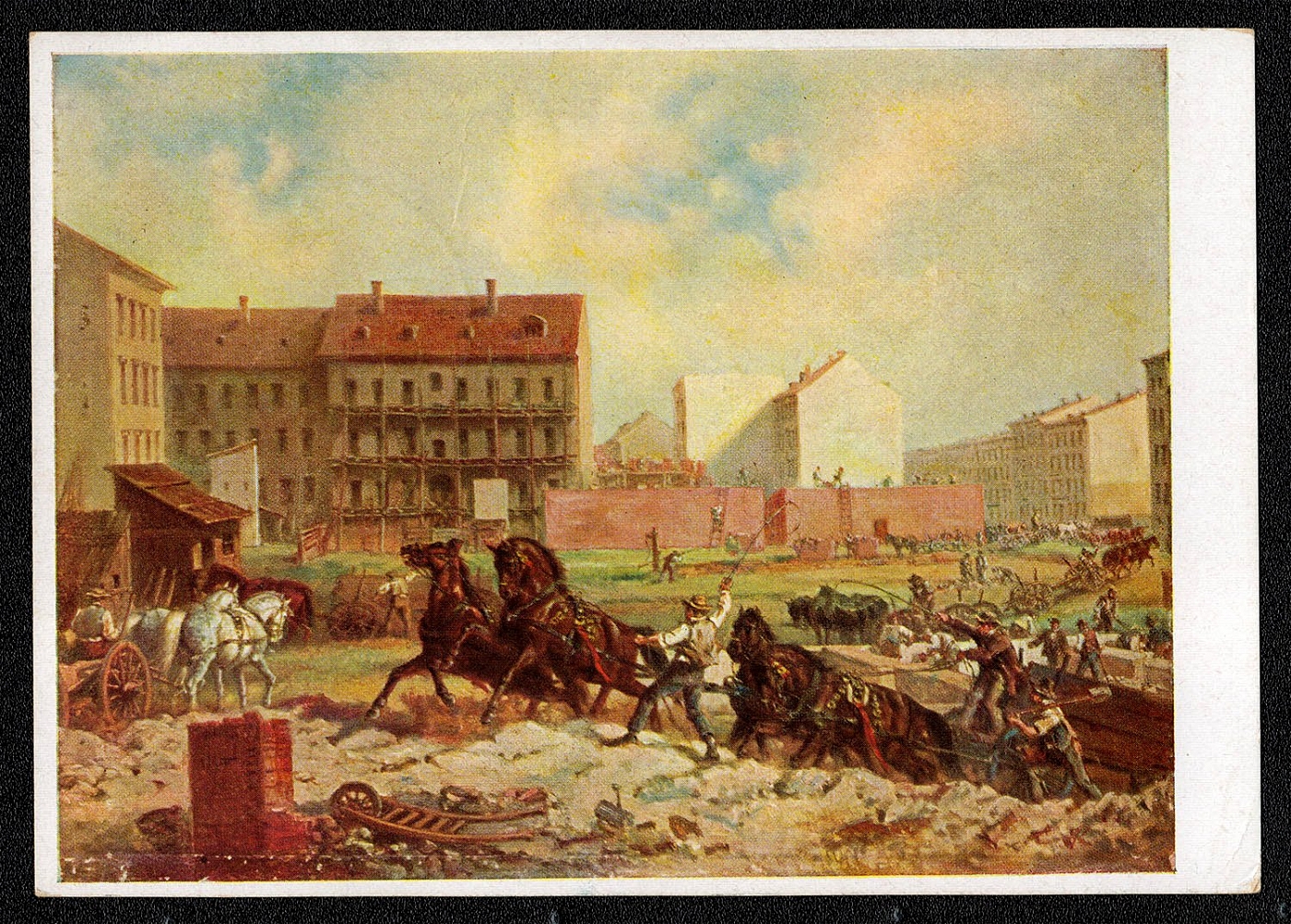
1937 Official Picture Postсard Post Card commemorating Berlin’s 700 years as a city.
The theme and title of this painting (on display at Ermeler Haus, Berlin) depicts the pace of the founding of the Second Reich when after 170 years another Prussian King was to be come the Emperor of Germany. In 1871 Wilhelm of Prussia was crowned Kaiser Wilhelm I of the Reich. Official Picture Post Card from the collection in the community publication “The Joy of Visual Art. ” Permission to use granted by the Mayor of the Reichs Capital City with the cooperation of the Reichs Commission for Artistic Design. Philatelically prepared and franked with Sc 416 and B94, with a favor cancellation dated 23 August 1937. The commemorative cancellation publicizes the 700 year celebration of the founding of the City of Berlin, 15 August - 5 September 1937, and apparently, the opening of the 1937 commercial fishing season!
Unsold
156
$170

1937 Munich In Memory of 9 November 1923
This commemorative card designed by Hans Friedmann and published by Heinrich Hoffmann depicts an SS Mann holding a swastika flag in front of the Feldherrnhalle in Miinchen, the scene of the attempted putsch.
Sold for:
$170
157
-
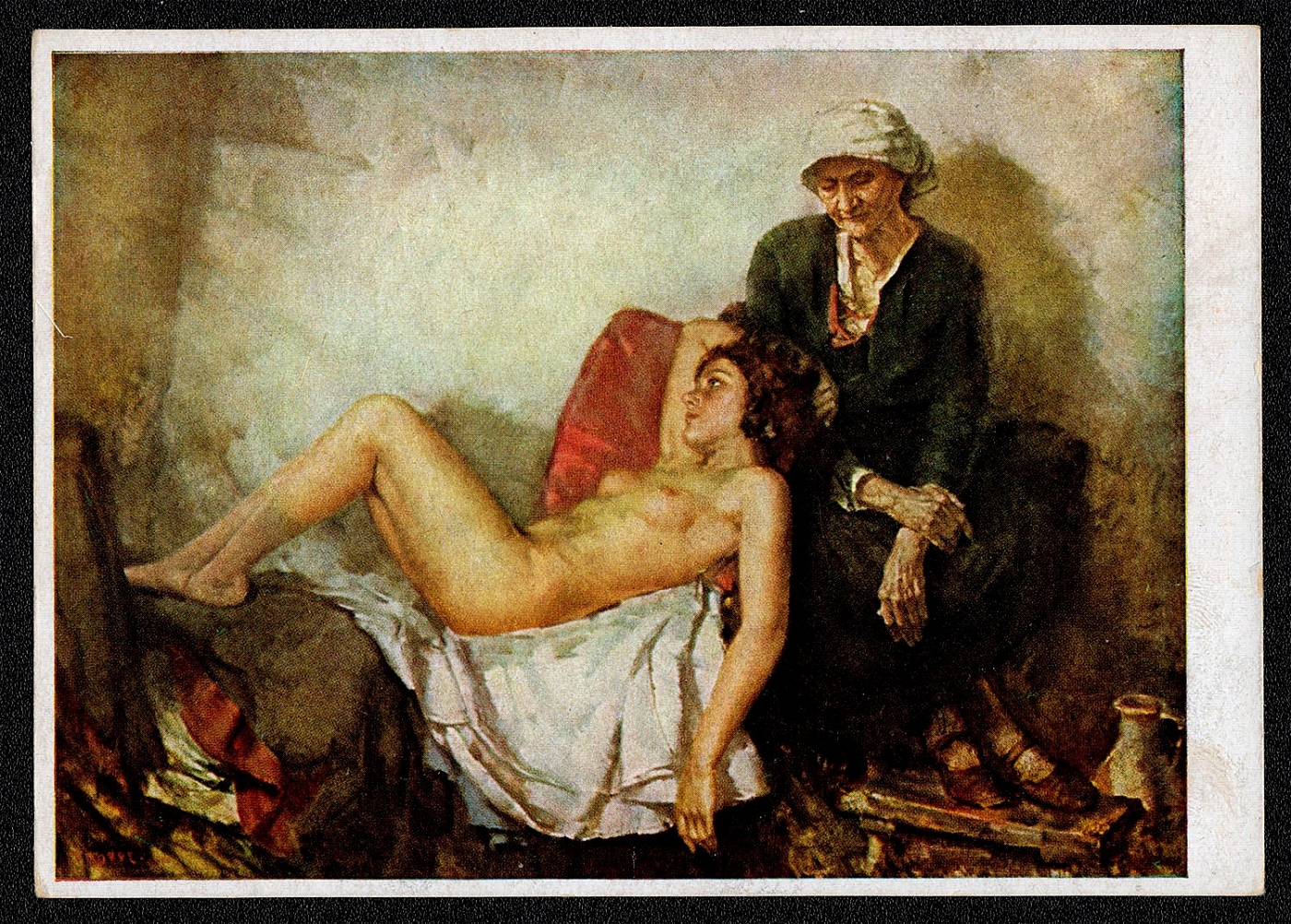
"1937 Munich House of German Art Karl Truppe “Being and Passing Away"""
The critic Karl Korn lost his wartime job on Das Reich for adversely commenting on Truppe’s painting Being and Passing Away, which Hitler gave as a wedding gift to Bavarian Gauleiter Wagner. By juxtaposing a nude maiden and a fully dressed old crone, Truppe had hit on a variation of the skull-beneath-the head theme, profitably combining eroticism and mock insight.
Unsold
158
-
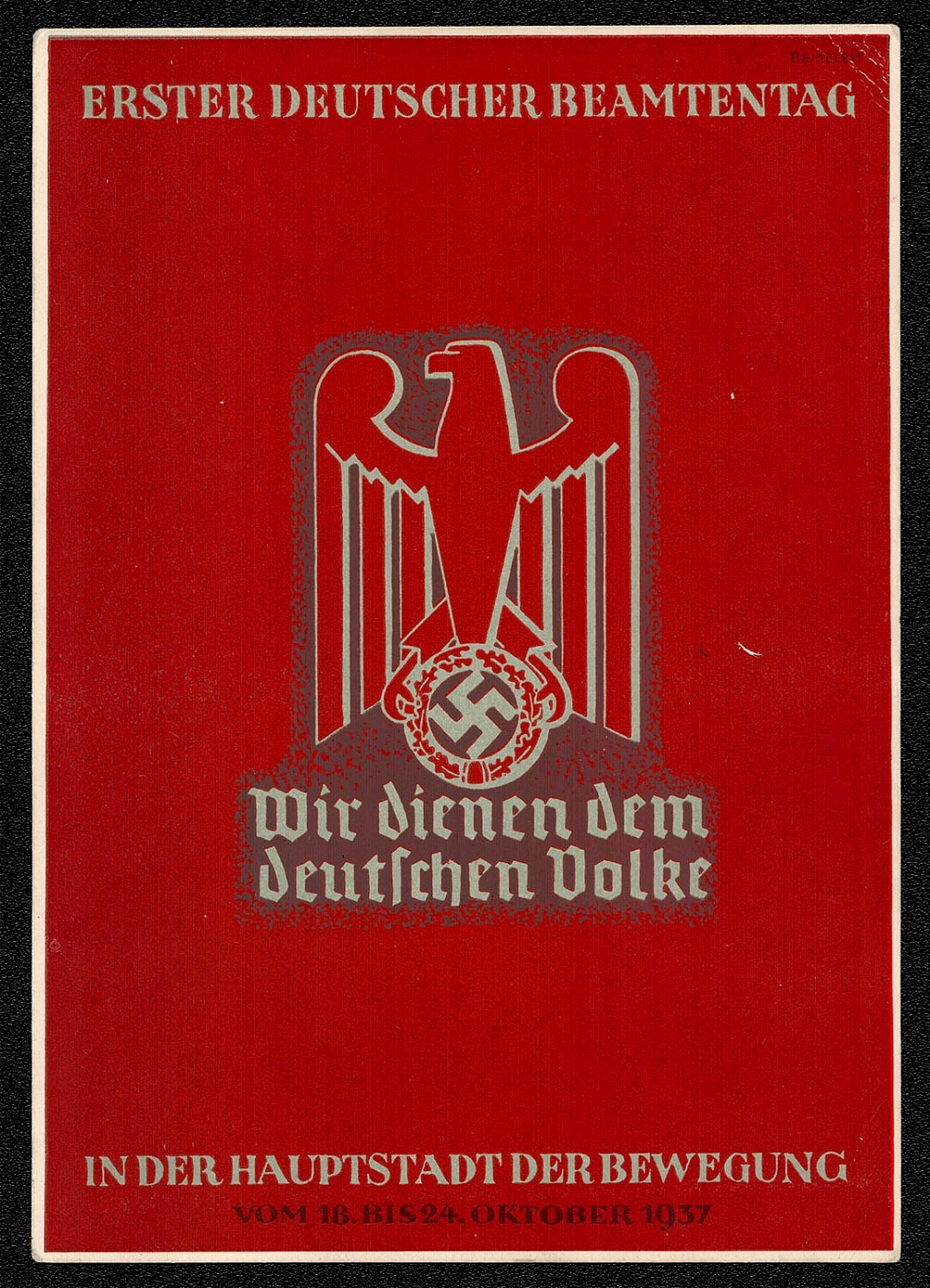
1937 The Special Postcard for the weeklong celebration of the First German Civil Service Day
The special postcard for the weeklong celebration of the First German Civil Service Day held in Miinchen (Capital City of the Movement) depicts the symbol of the Deutscher Beamten, a heraldic eagle clutching a swastika, and the motto: Uir dienen dem deutseben Volke (We serve the German People).
Unsold
159
-
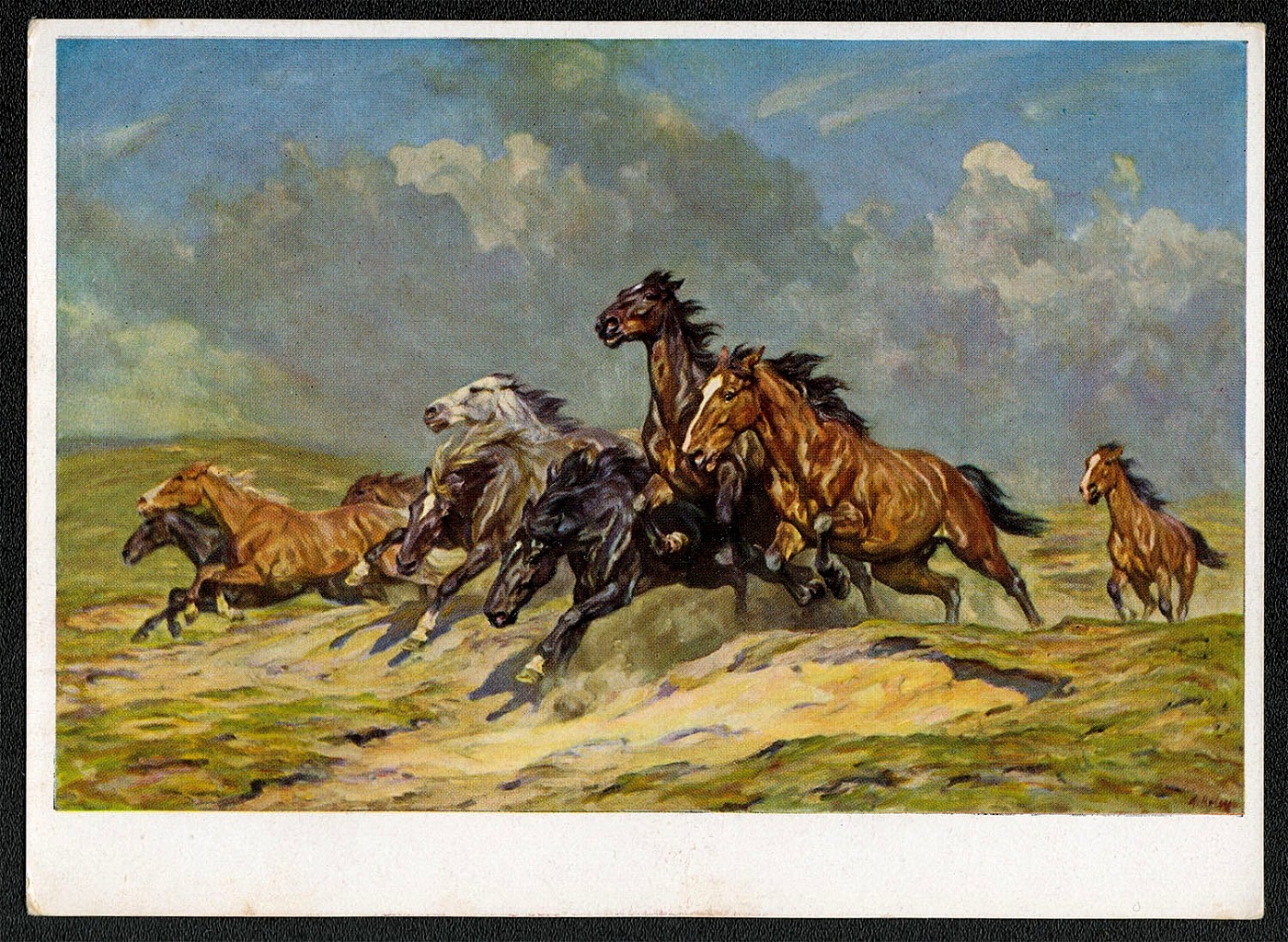
"1937 Munich House of German Art Adolf Roloff ""Escaping Horses"""
"1937 Munich House of German Art Adolf Roloff ""Escaping Horses"""
Unsold
160
-
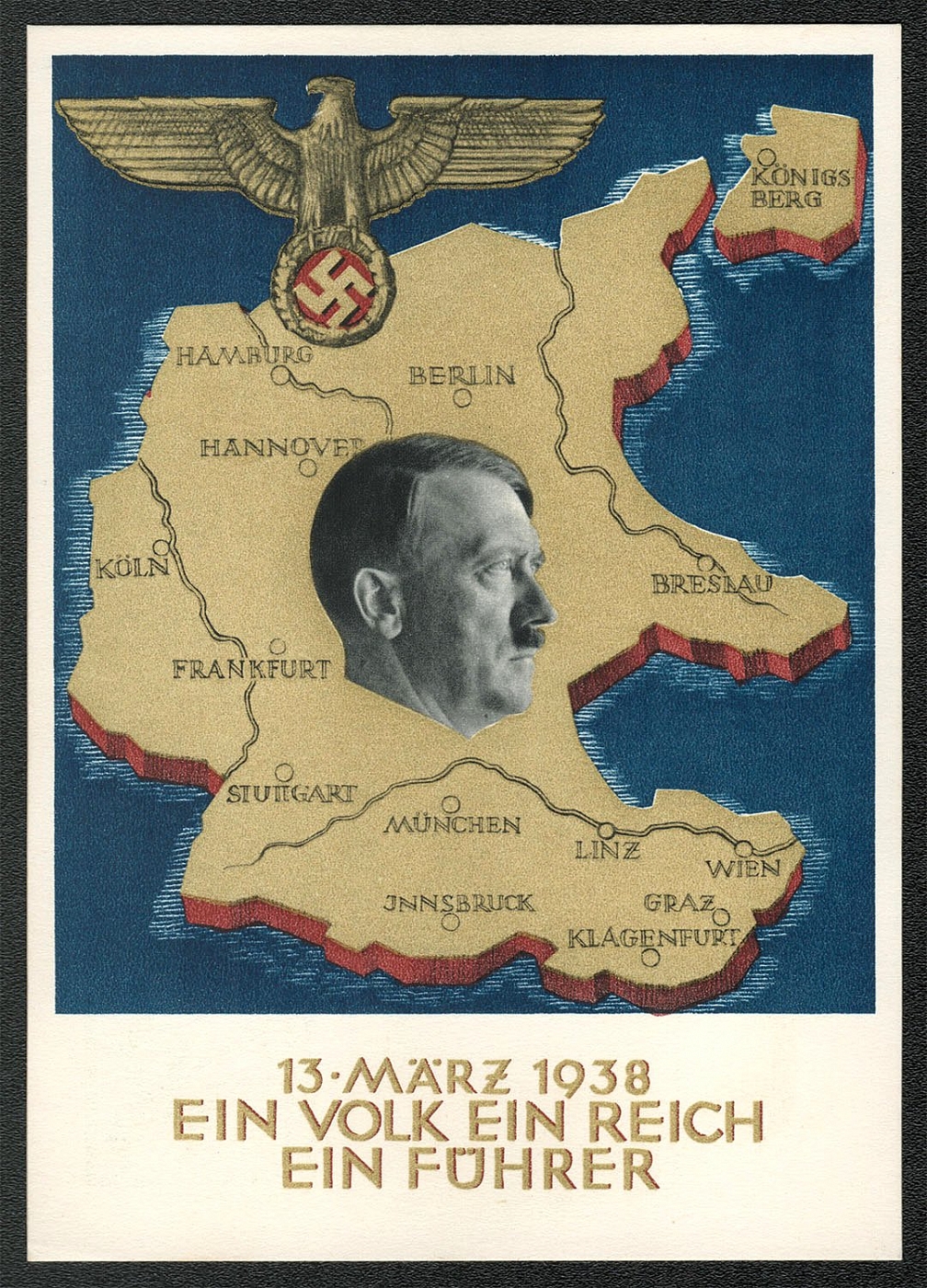
1938 the Anschluss plebiscite, depicts a combined Germany and Austria
Michel P 267 was printed by Brend’amour, Simbart, and Company of Miinchen. Professor Puchinger of Austria designed the imprinted stamp. The total cost of the card was 15 Reichspfennig. The gold relief map on Michel P 267, the official postal card for the Anschluss plebiscite, depicts a combined Germany and Austria. It was designed by Richard Klein. The inscription “One People, One Empire, One Leader” was first used on the 5 Mark stamp of 1900, which originally read “One People, One Empire, One God. ” The card was intended to be issued for the 13 March 1938 plebiscite proposed by Austrian Chancellor Schuschnigg. Austria, however, was annexed by Germany on 11 March. Regardless of the date printed on the card, it was nevertheless issued on 8 April for the post-annexation plebiscite scheduled for 10 April.
Unsold
161
-
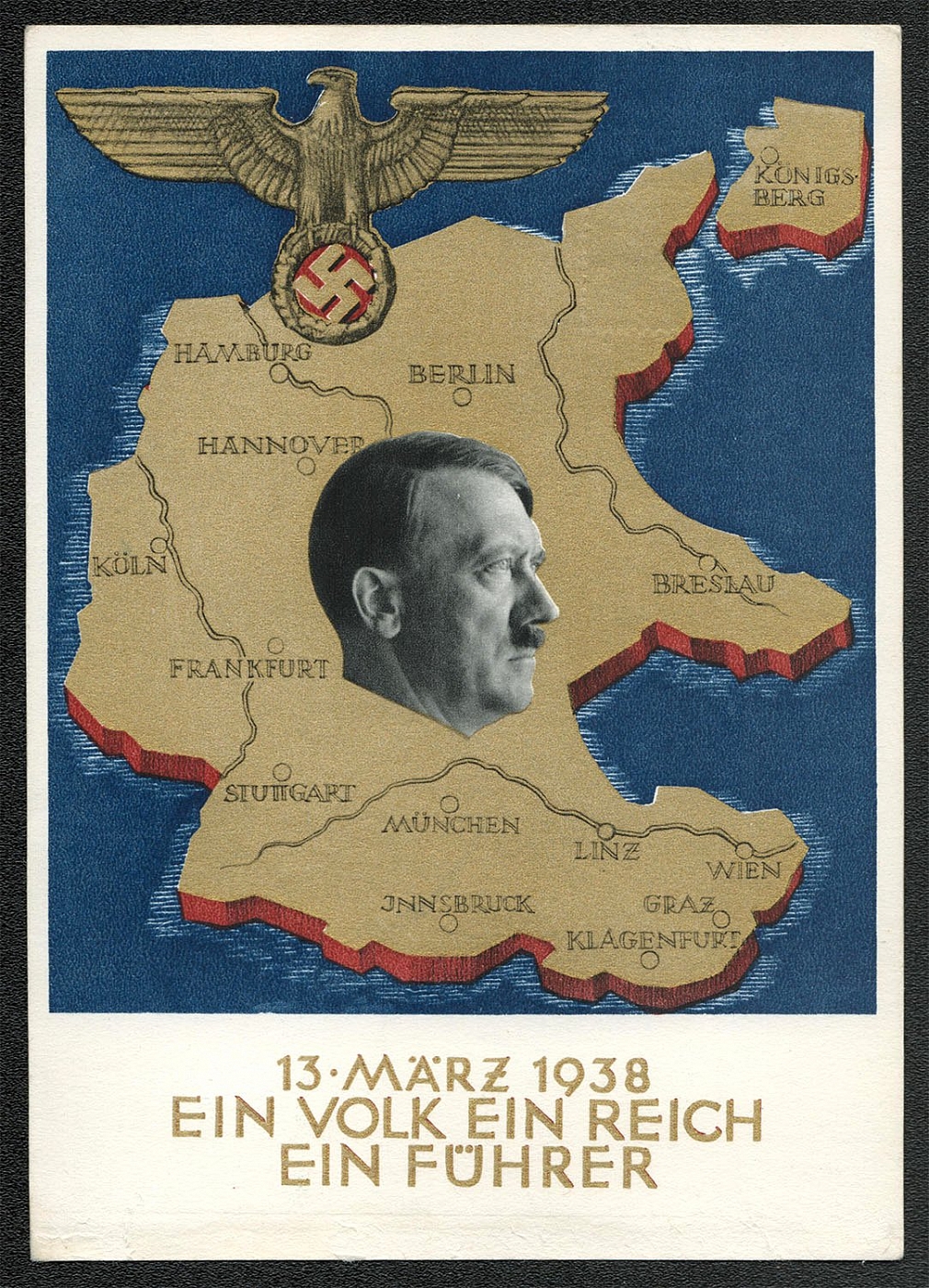
1938 the Anschluss plebiscite, depicts a combined Germany and Austria (2)
There were two printings of the official post card for the Anschluss plebiscite. Michel P 267 with the imprinted stamp of the same design as the large German format adhesive, and the above without an imprinted stamp. Although not cataloged by Michel, it was obviously available in Wien on 8 April 1938 the first day of issue of Scott 485. This card was published by Hoffman, but printer’s credit is not given.
Unsold
162
-
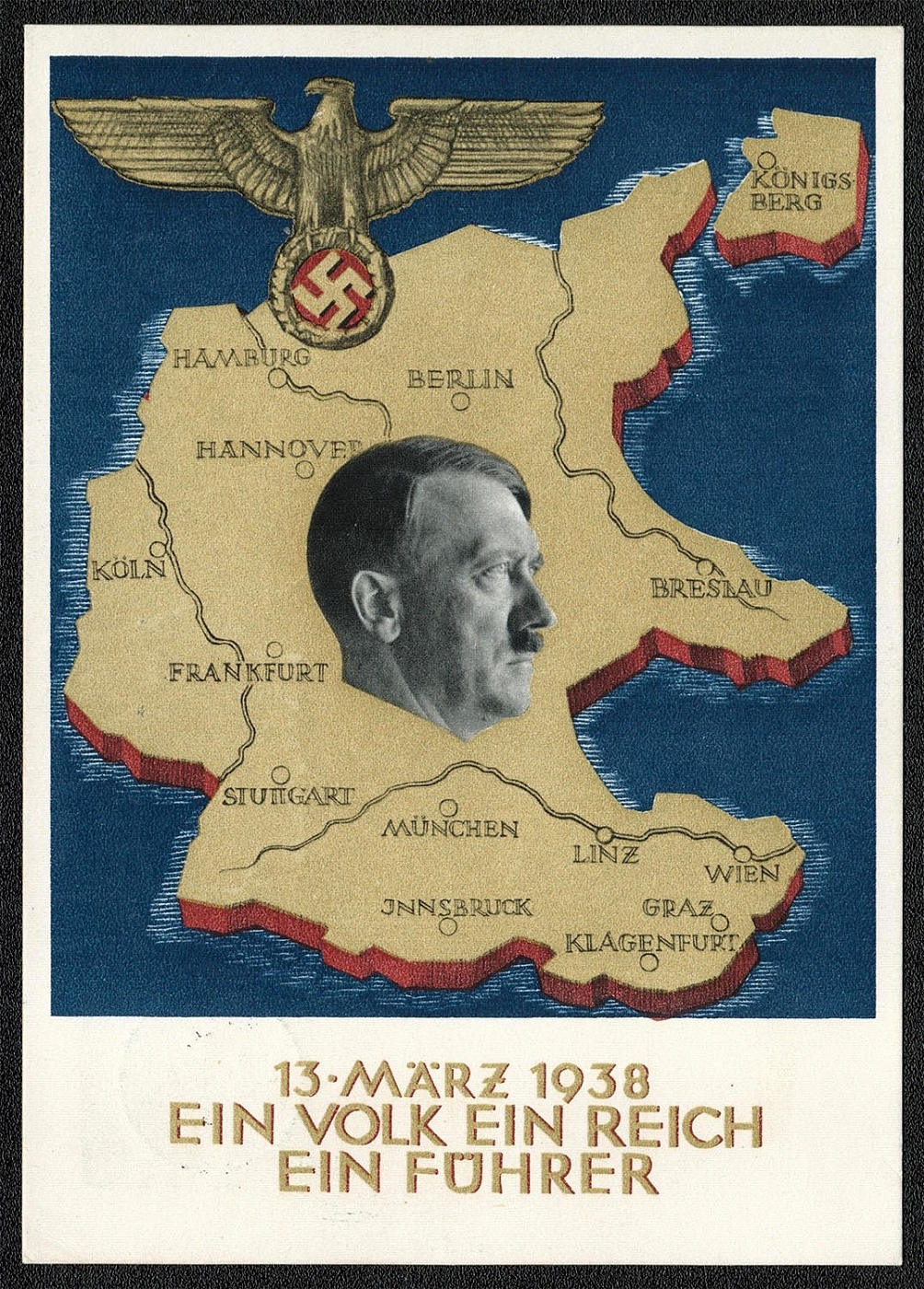
1938 the Anschluss plebiscite, depicts a combined Germany and Austria (3)
Michel P 267 with the imprinted stamp of the same design as the large German format adhesive, posted in Halle (Saale) on 10 April 1938.
Unsold
163
-
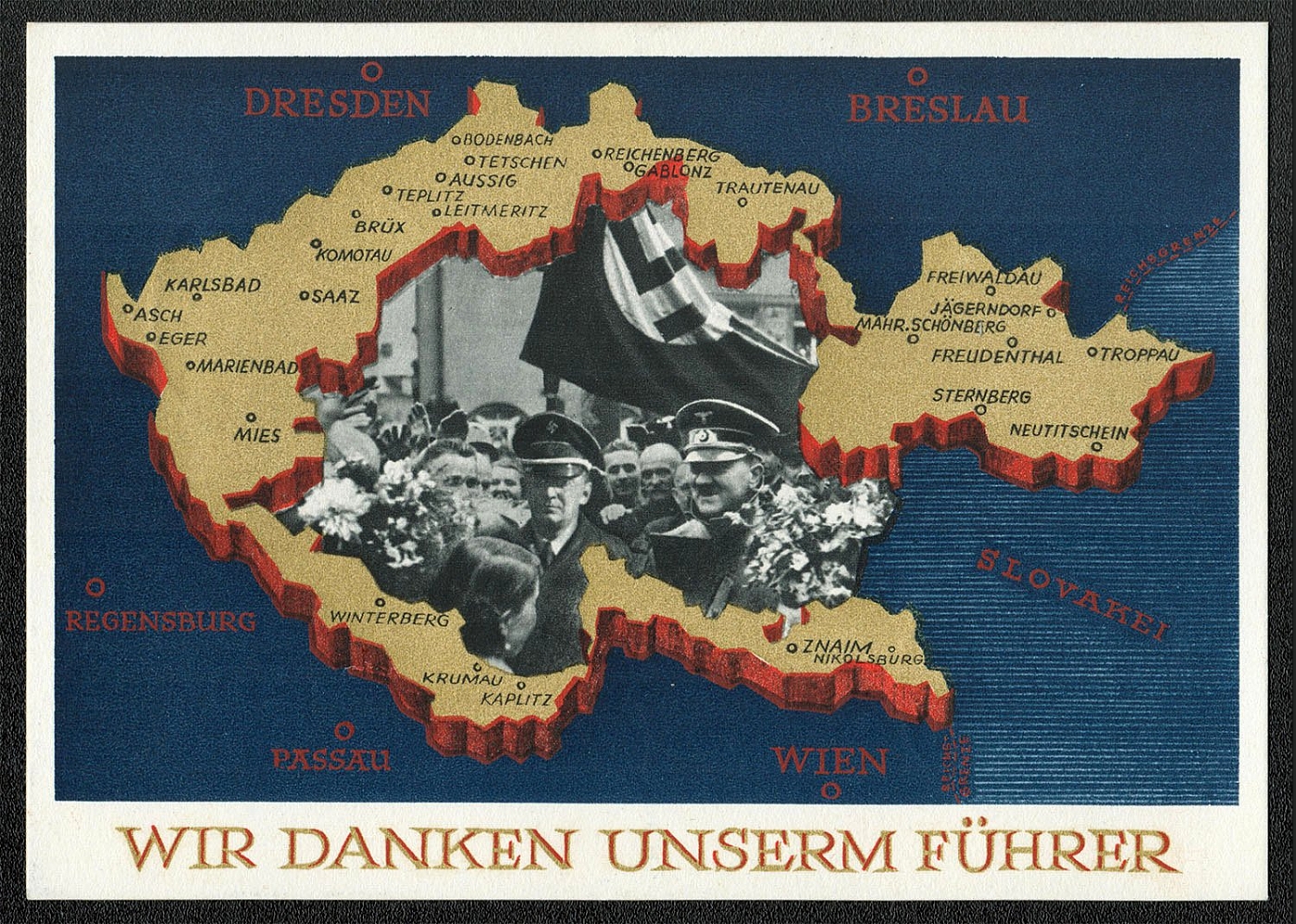
1938 Special card for the Sudetenland Plebiscite
The official post card issued 2 December 1938 for the acquisition of Sudetenland depicts a map of Sudetenland in gold. The photo is of Hitler being greeted on his arrival. The inscription reads, We thank our leader. The card was designed and ordered by Hoffmann, and published by Brend’ainour, Simbart & Co. of Miinchen.
Unsold
164
-
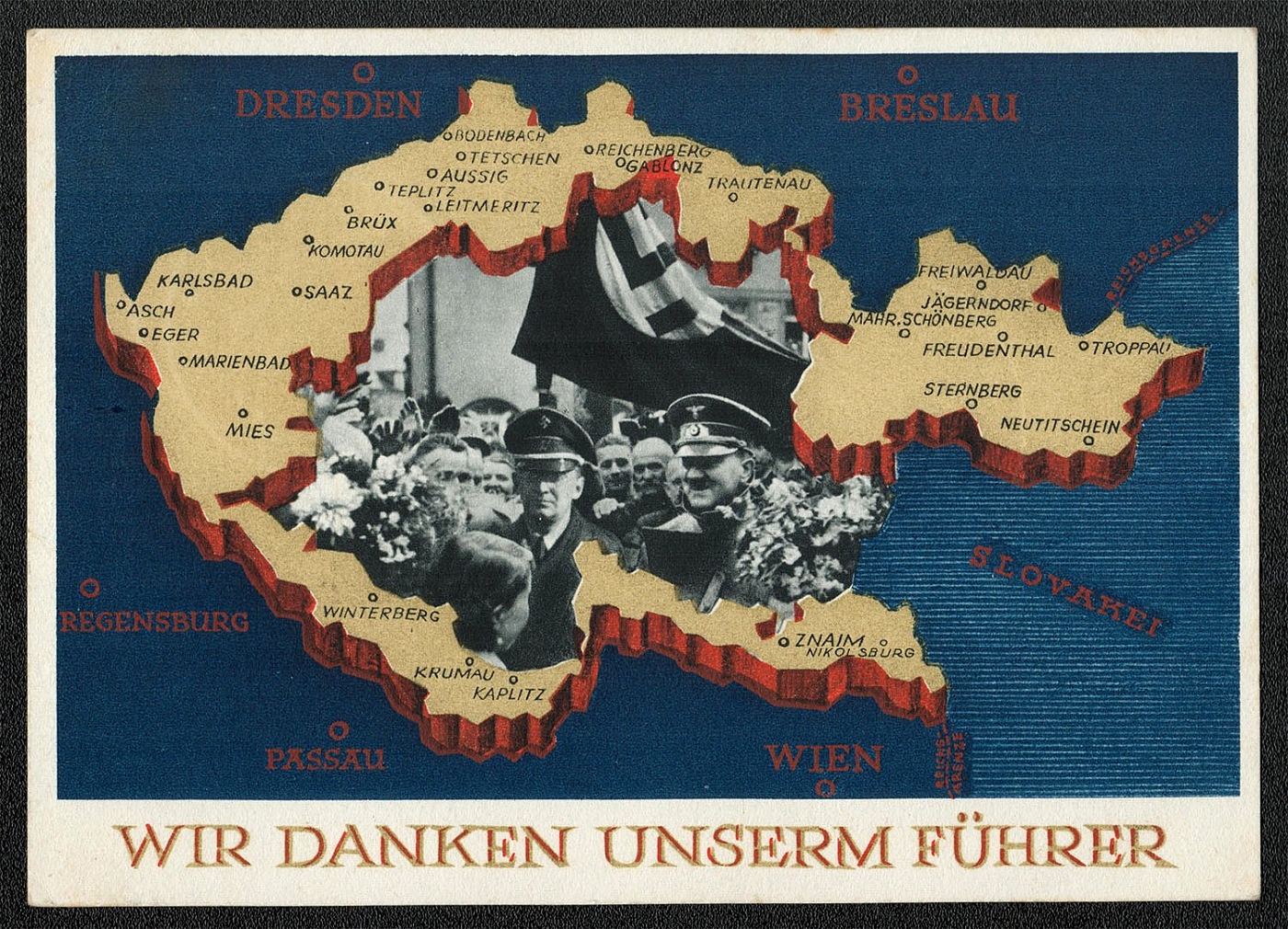
1938 Special card for the Sudetenland Plebiscite (2)
The official post card issued for the acquisition of Sudetenland postally used with the 4 December 1938 Troppau, Sudetenland sonderstempek Choice and Acknowledgement Day in Liberated Sudetenland The imprinted stamp design was by Prokop of Zwickau in Sudetenland. The card sold for 15 Rpf and was valid until 31 December 1939.
Unsold
165
-
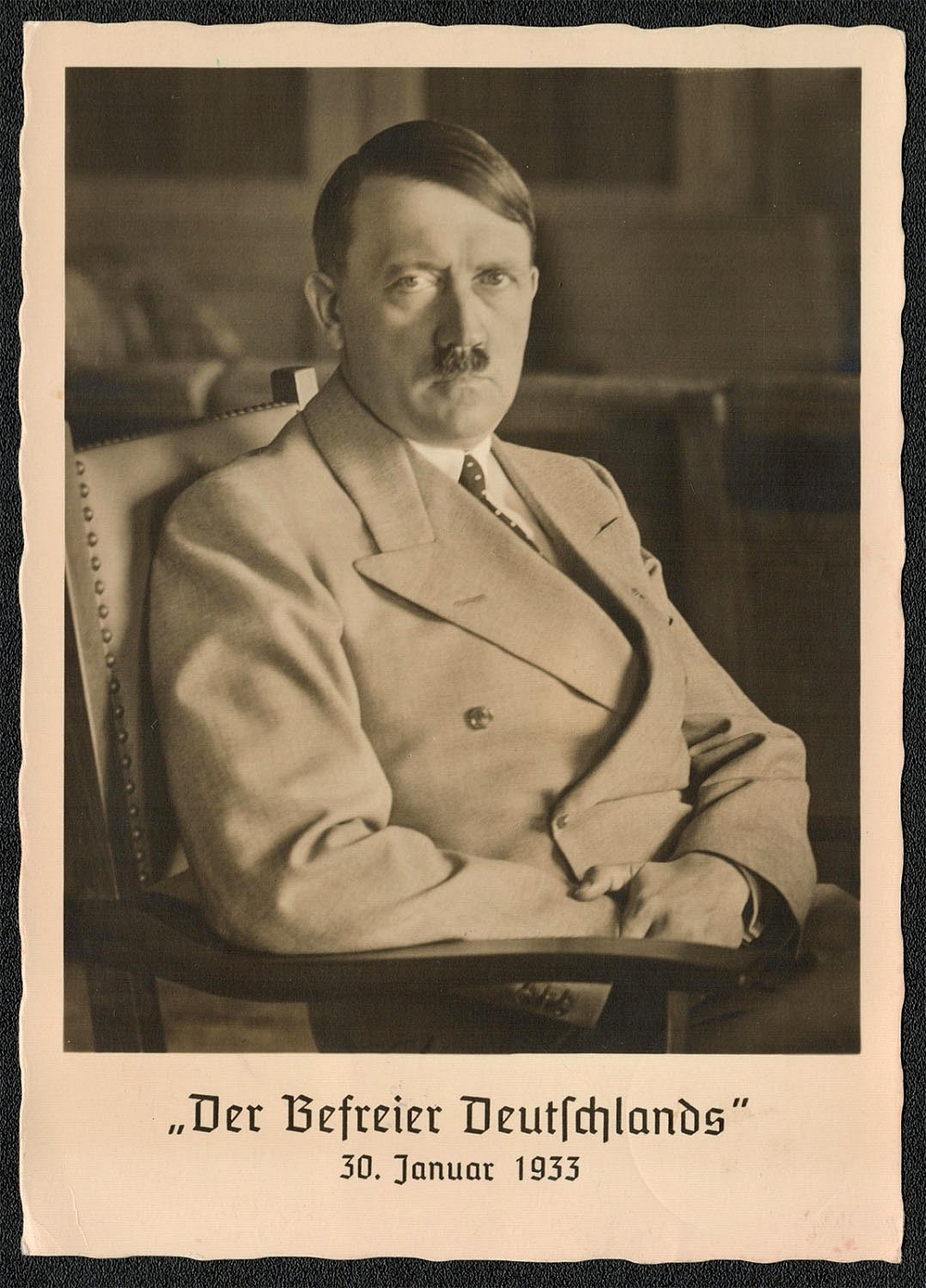
1938 Adolf Hitler The Liberator of Germany
"Photo card privately printed and published in 1938 by Heinrich Hoffmann, Miinchen, Theresienstrasse 74. (Gogolinski 329, 1-7-101) Issued to celebrate the fifth anniversary of Hitler’s seizure of power, 30 January 1933. The photo is cropped from a larger picture of Hitler taken in 1936 by Heinrich Hoffmann in the study of the Reichskanzlef s home on Obersalzberg, the 3,200-foot high mountain ridge northeast of Berchtesgaden. Scott No. B118 tied to card with cancellation commemorating Hitler’s 49""' birthday. The inscription reads: Der Fiihrer in seinem Heim am Obersalzberg. (The Fiihrer in his home on the Obersalzberg.) The blue cachet below the inscription was struck by a steel die and is from the Braunes Haus (Brown House) in Miinchen. This was the term for the former Barlow Mansion (Briennerstrasse 45) acquired by the NSDAP on 5 June 1930 with money from industry and from a special party appeal. The name was derived from the color of the uniforms worn by the new owners, and was first used only popularly. the party later adopted it officially. By the time the NSDAP leadership moved into the Brown House on 1 January 1931 (after extensive remodeling by Paul Troost), it was too small because of large increases in membership after the successful elections of 14 September 1930. Adjacent buildings were rented, and the name Brown House was soon extended to the whole complex. Party buildings in other cities were also popularly called “brown houses.”"
Unsold
166
$20
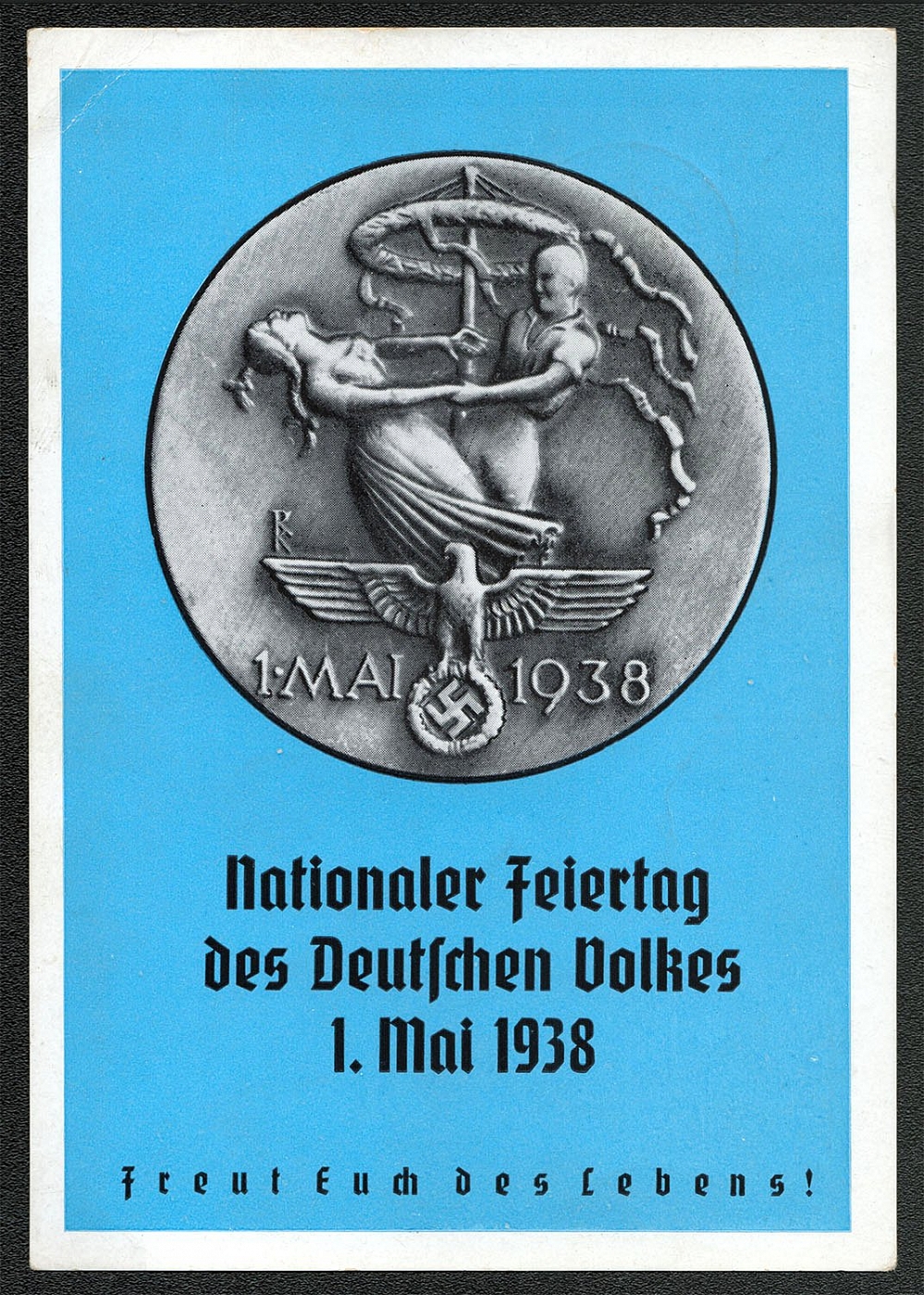
1938 1 May National Holiday of the German People
The semiofficial post card issued for the Day of National Labor, depicting the May Day medallion designed by Prof. Klein. The inscriptions translate: National Holiday of the German People 1 May 1938 Take Happiness in Life Published by Heino Kohlhoff, Braunschweig. Printed in Styria, Graz.
Sold for:
$20
167
-
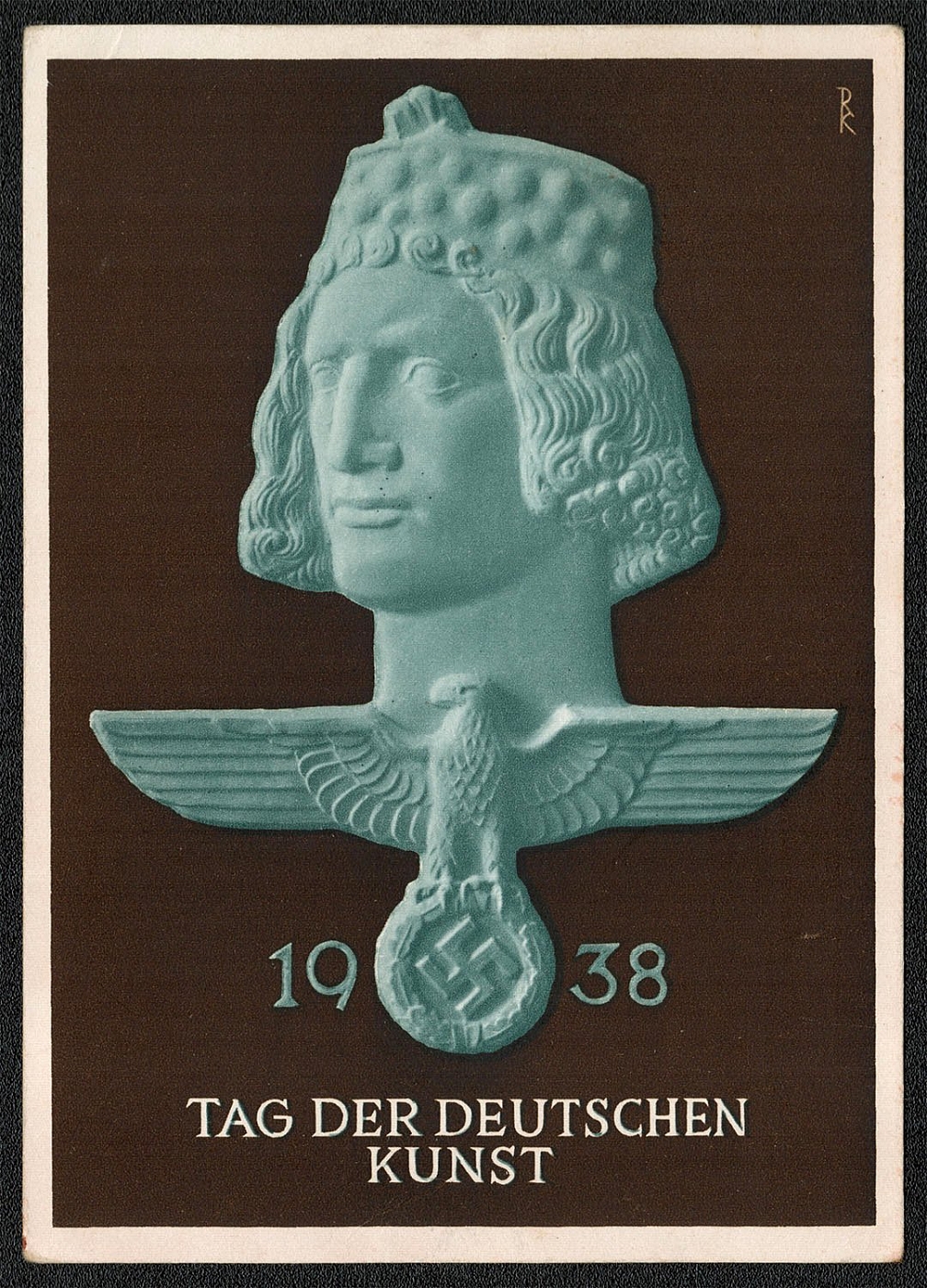
1938 Munich Day of German Art
“The Day of German Art” privately issued souvenir postal card for the art exhibition in the Miinchen House of Art. The special postmark was used on 10 July 1938 in Miinchen only. 10 July 1938 This special souvenir postal card depicts the head of the Bamberg Rider, a life-size equestrian statue in Bainberg Cathedral. It was carved in 1240. The magnificent statue of a youth astride a horse is thought to represent Emperor Constantine (only symbolically. it is not a portrait). An expert in National Socialism stated, “In the whole field of art, there is nothing to equal the equestrian statue of the Rider of Bamberg . . . which represents the ideal of German youth.”
Unsold
168
-
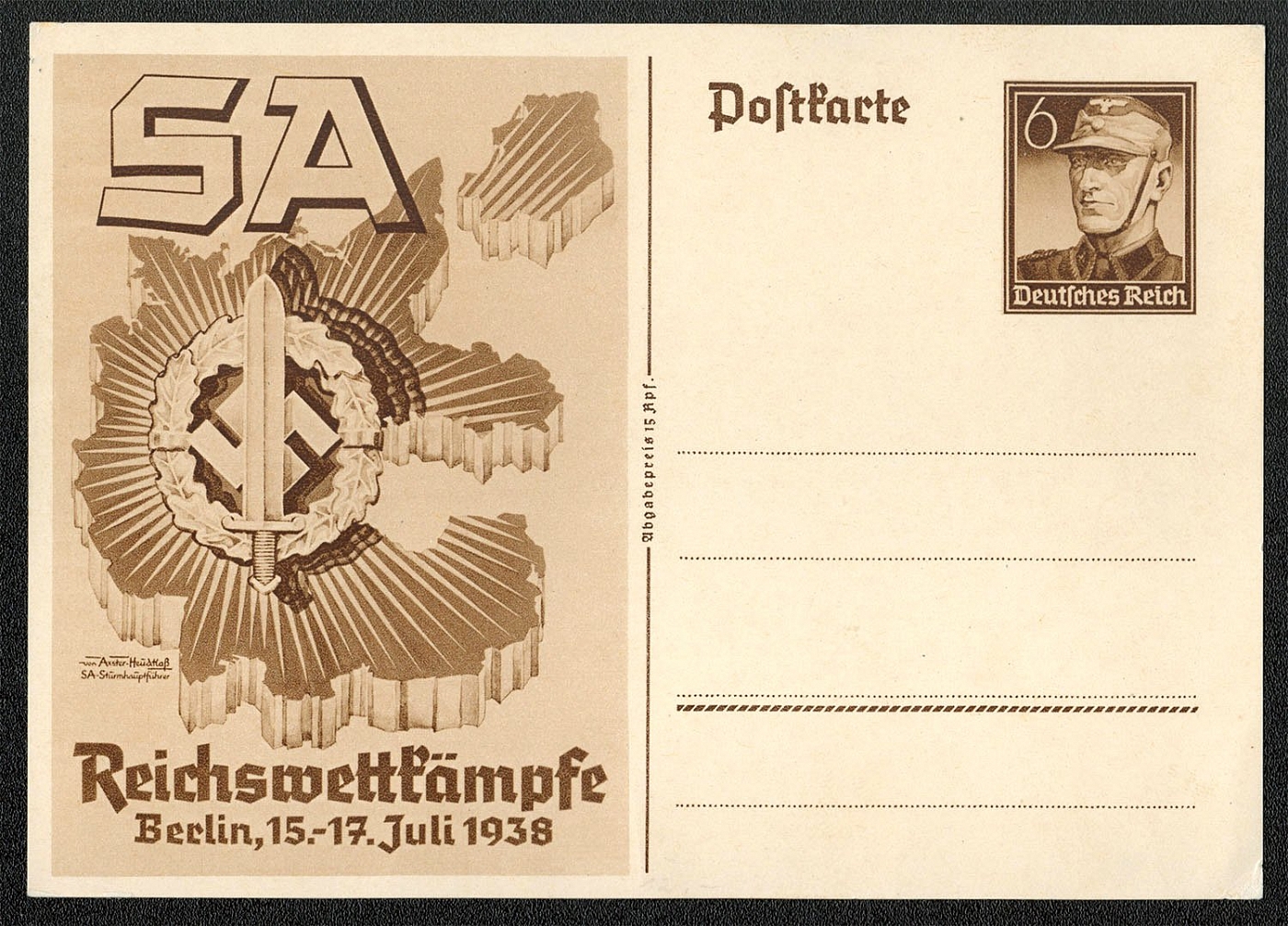
1938 The official Postcard commemorating the SA National Competitions.
The official post card commemorating the SA National Competitions. The designs of both the card and the imprinted stamp were by SA Stiirmhanptfuhrer Werner von Axster-Heudtlass of Berlin. The stamp depicts an SA Mann. The cachet shows the SA Sports Badge against a map of Greater Germany. The card was issued on 12 July 1938 and remained valid until 31 December 1939. The former leader of the SA, Ernst Rohm, instituted the SA National Competitions, in November 1933. On 15 February 1935, Hitler gave the badge official status. Another decree, on 19 January 1939, changed the name of the badge to SA Military Sports or Military Defense Badge. It became the obligation of all German males over seventeen to compete for this award. Proficiency was required in the following: physical training (hundred meter sprint, long jump, weight putting, grenade throwing, three thousand meter run), defense sports (twenty-five kilometer march in full kit, small bore shooting, grenade throwing, obstacle course in gas mask, swimming or cycling, and first aid), and field craft (orientation, observation, topography, distance observation, camouflage, observing, and reporting).
Unsold
169
-
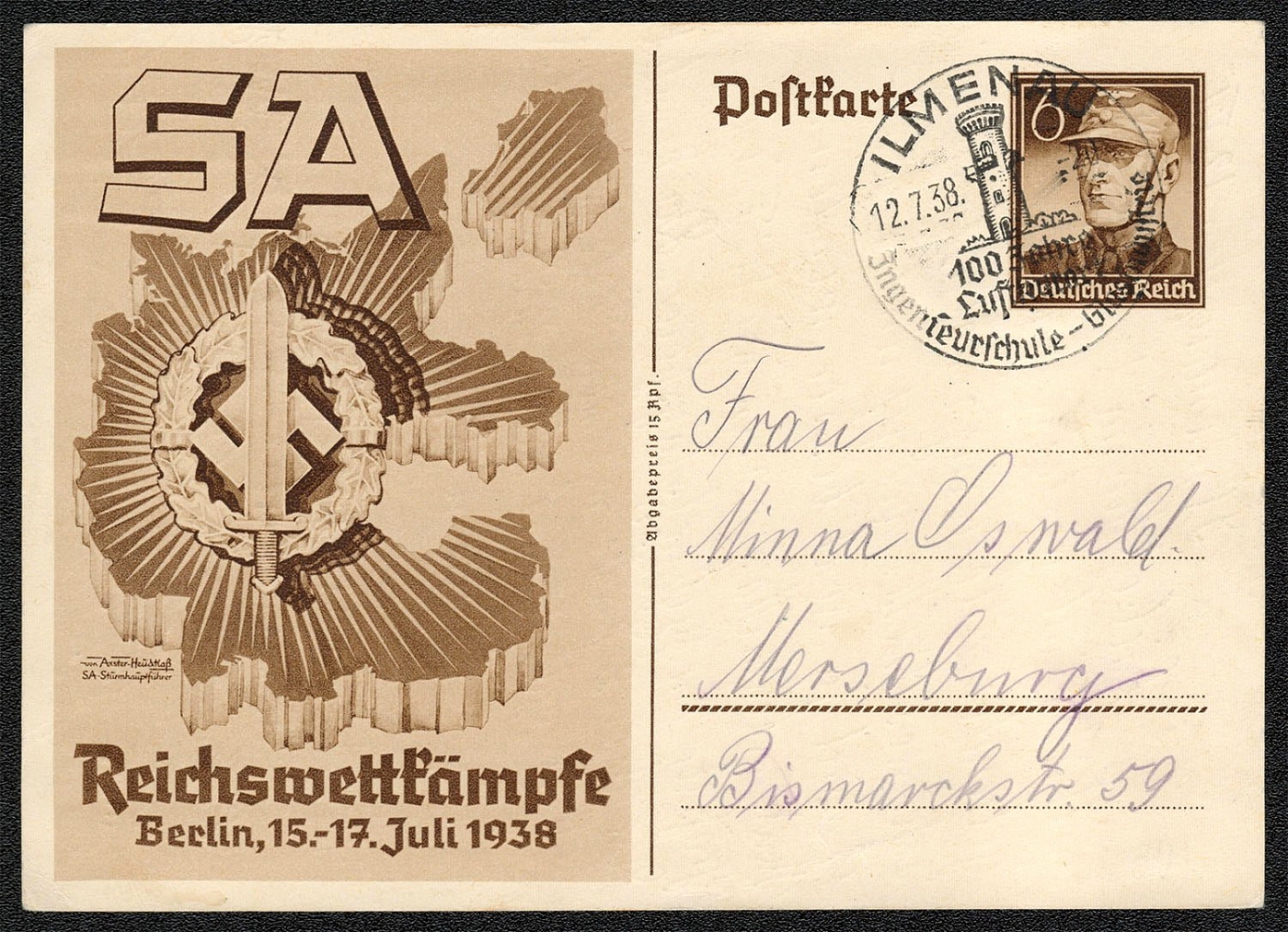
1938 Ilmenau The official Postcard commemorating the SA National Competitions.
Michel P271, the official post card commemorating the SA National Competitions, posted on 12 July 1938, the first day of issue, in Ilmenau. The pictorial publicity cancellation depicts the view tower on the Kickelhahn. The slogan in the cancellation 100 Years / Health Resort / Engineering School / Glass Industry Ilmenau (1565 ft.), noted for its technical school, porcelain and glass factories, had approximately 14,000 inhabitants in 1938. Situated on the River Ilm, it was a favorite summer and winter sport resort during the Third Reich. The view tower at the summit of the Kickelhahn (2825 ft.) was open in the afternoon only. A fee was required for entry, and refreshments were served. About 200 paces to the northwest stood the Goethe-Hauschen, a wooden hut where Goethe frequently spent the night, and on the wall of which he wrote “Uber alien Gipfeln ist Ruh,” (The summit is the best place to rest) on 6 September 1780. The hut standing in 1938 was erected after the first one burned down in 1870.
Unsold
170
-
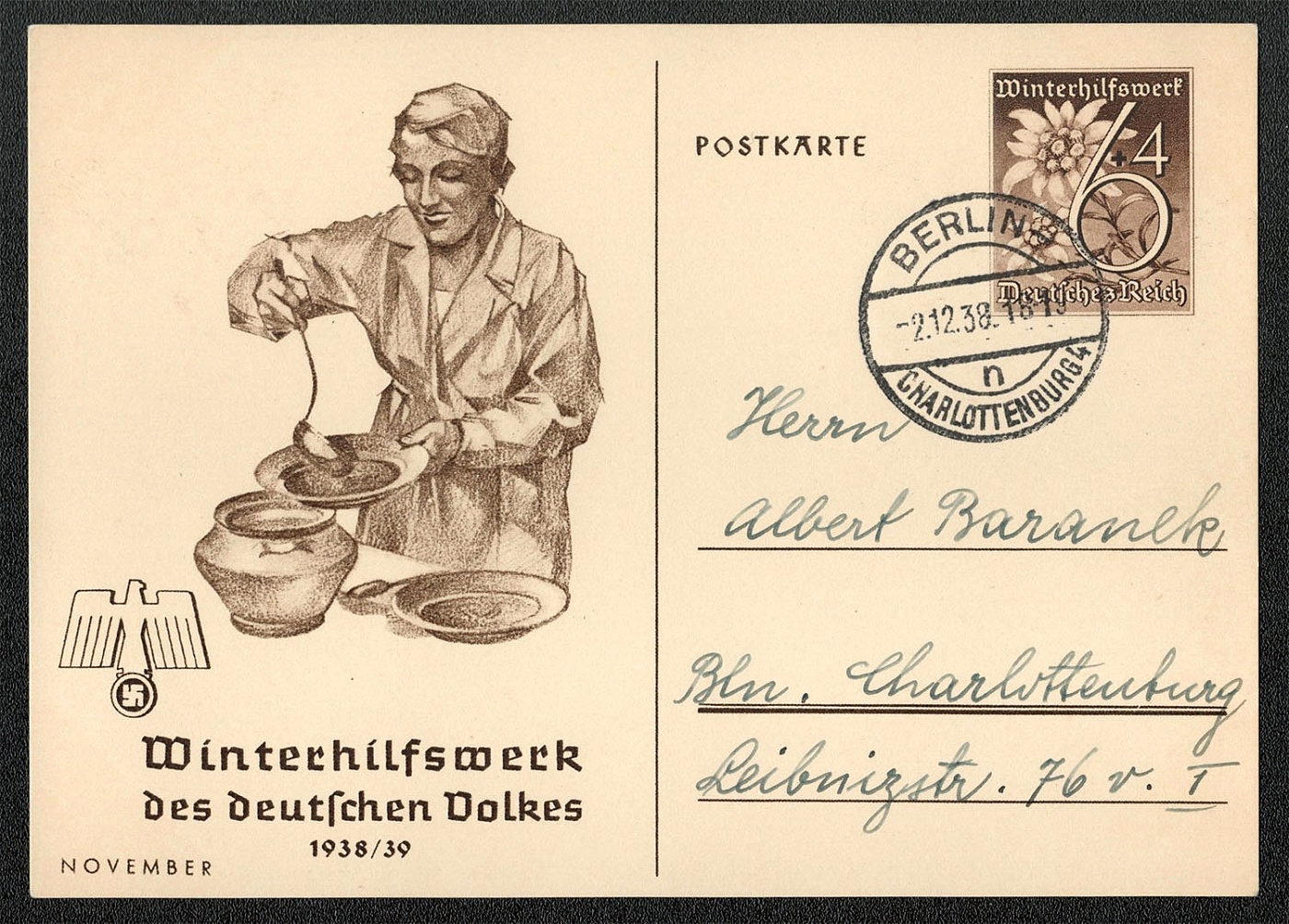
1938 Special Postcards for the 1938/39 Winter Relief Fund
The imprinted stamp, an edelweiss, and the cachet depicting a woman serving stew, were designed by von Axster-Heudtlass of Berlin for the Winterhilfe postal stationery. A different card was issued each month beginning 18 October 1938. All cards were valid through 30 September 1939. Michel P 274/02 (November). Postally used and mailed from Berlin, Charlottenburg 4, 2 December 1938.
Unsold
171
-
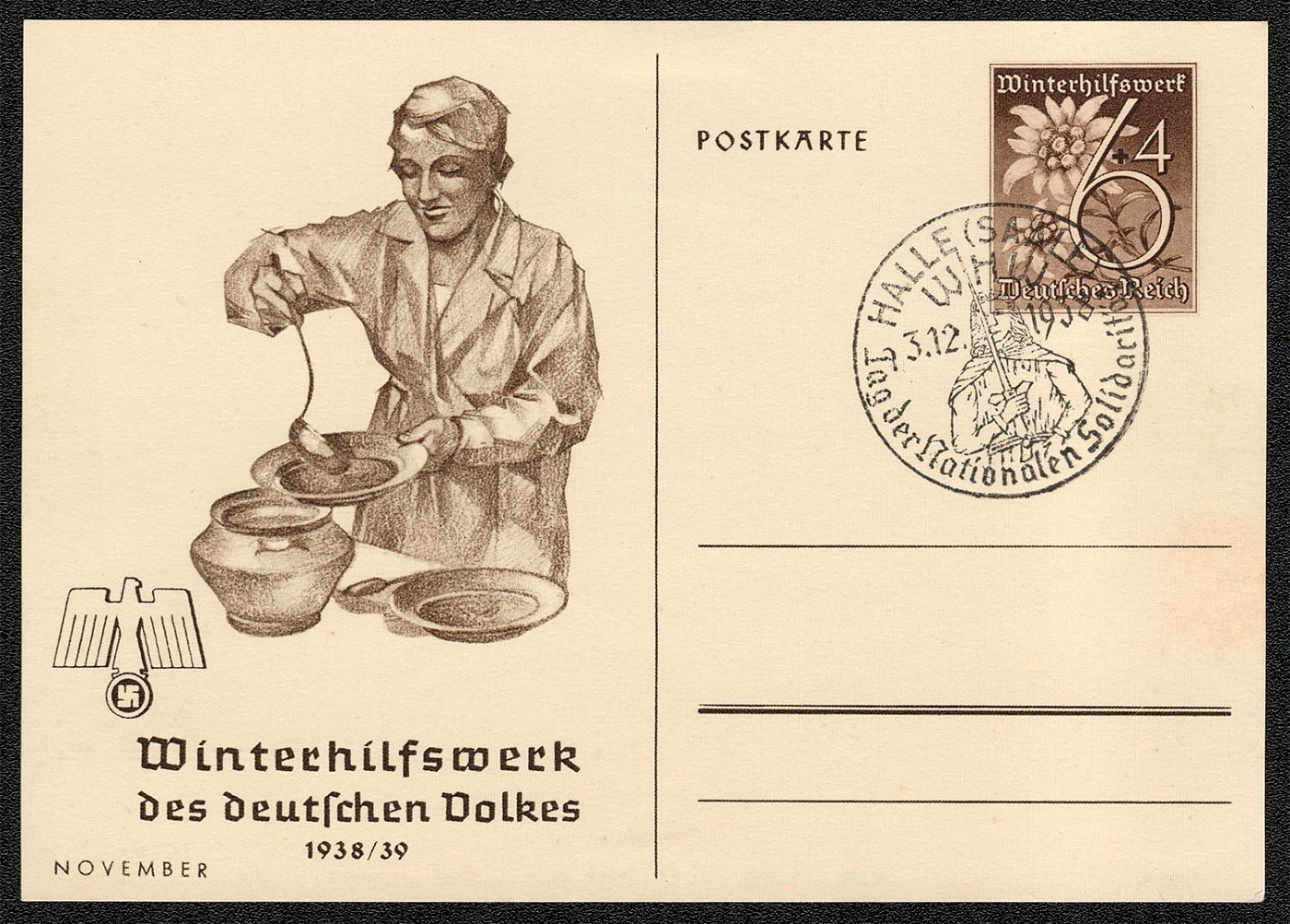
1938 Special Postcards for the 1938/39 Winter Relief Fund (2)
The imprinted stamp, an edelweiss, and the cachet depicting a woman serving stew, were designed by von Axster-Heudtlass of Berlin for the Winterhilfe postal stationery. A different card was issued each month beginning 18 October 1938. All cards were valid through 30 September 1939. Michel P 274/02 (November). The Gefdlligkeitsstempel (favor cancellation) dated 3 December 1938, Halle (Saale), illustrates a mediaeval knight and publicizes the Day of National Solidarity.
Unsold
172
-
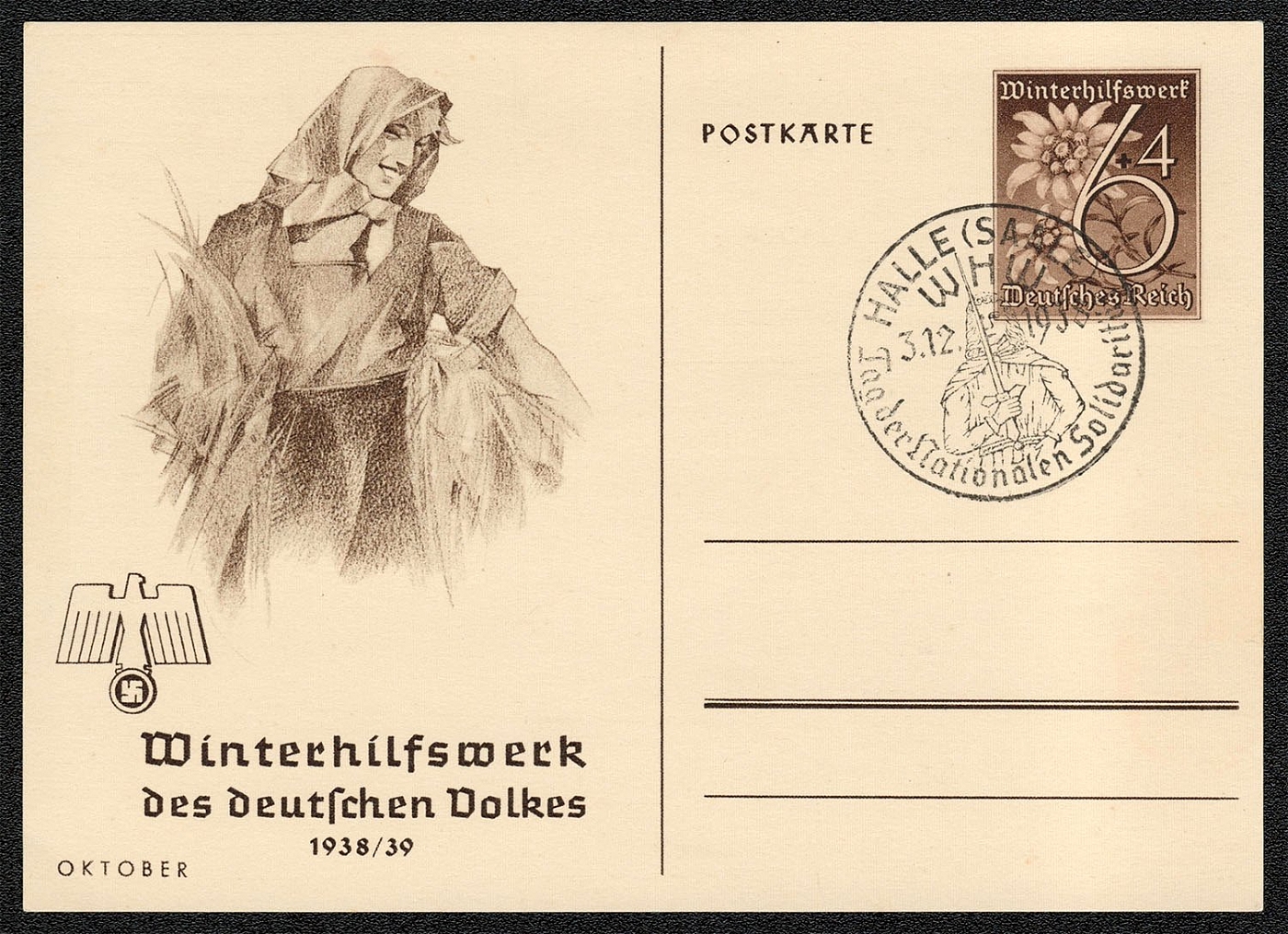
1938 Special Postcards for the 1938/39 Winter Relief Fund (3)
The imprinted stamp, an edelweiss, and the cachet depicting a woman gathering the harvest were designed by von Axster-Heudtlass of Berlin for the Winterhilfe postal stationery. A different card was issued each month beginning 18 October 1938. All cards were valid through 30 September 1939. Michel P 274/01 (Oktober). The Gefalligkeitsstempel (favor cancellation) dated 3 December 1938, Halle (Saale), illustrates a mediaeval knight and publicizes the Day of National Solidarity.
Unsold
173
-
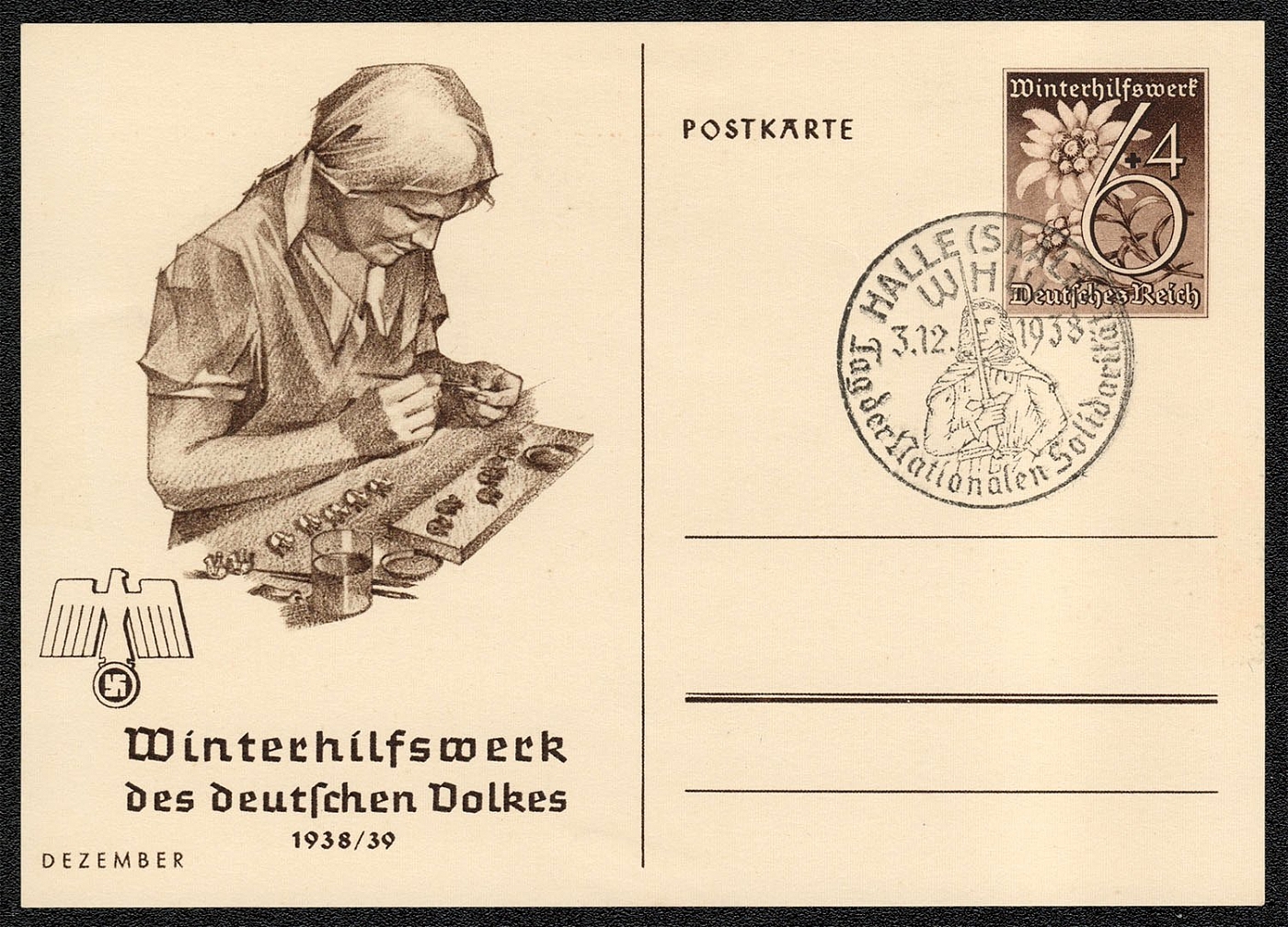
1938 Special Postcards for the 1938/39 Winter Relief Fund (4)
The imprinted stamp, an edelweiss, and the cachet depicting a female munitions worker, were designed by von Axster-Heudtlass of Berlin for the Winterhilfe postal stationery. A different card was issued each month beginning 18 October 1938. All cards were valid through 30 September 1939. Michel P 274/03 (December). The Gefalligkeitsstempel (favor cancellation) dated 3 December 1938, Halle (Saale), illustrates a mediaeval knight and publicizes the Day of National Solidarity.
Unsold
174
-
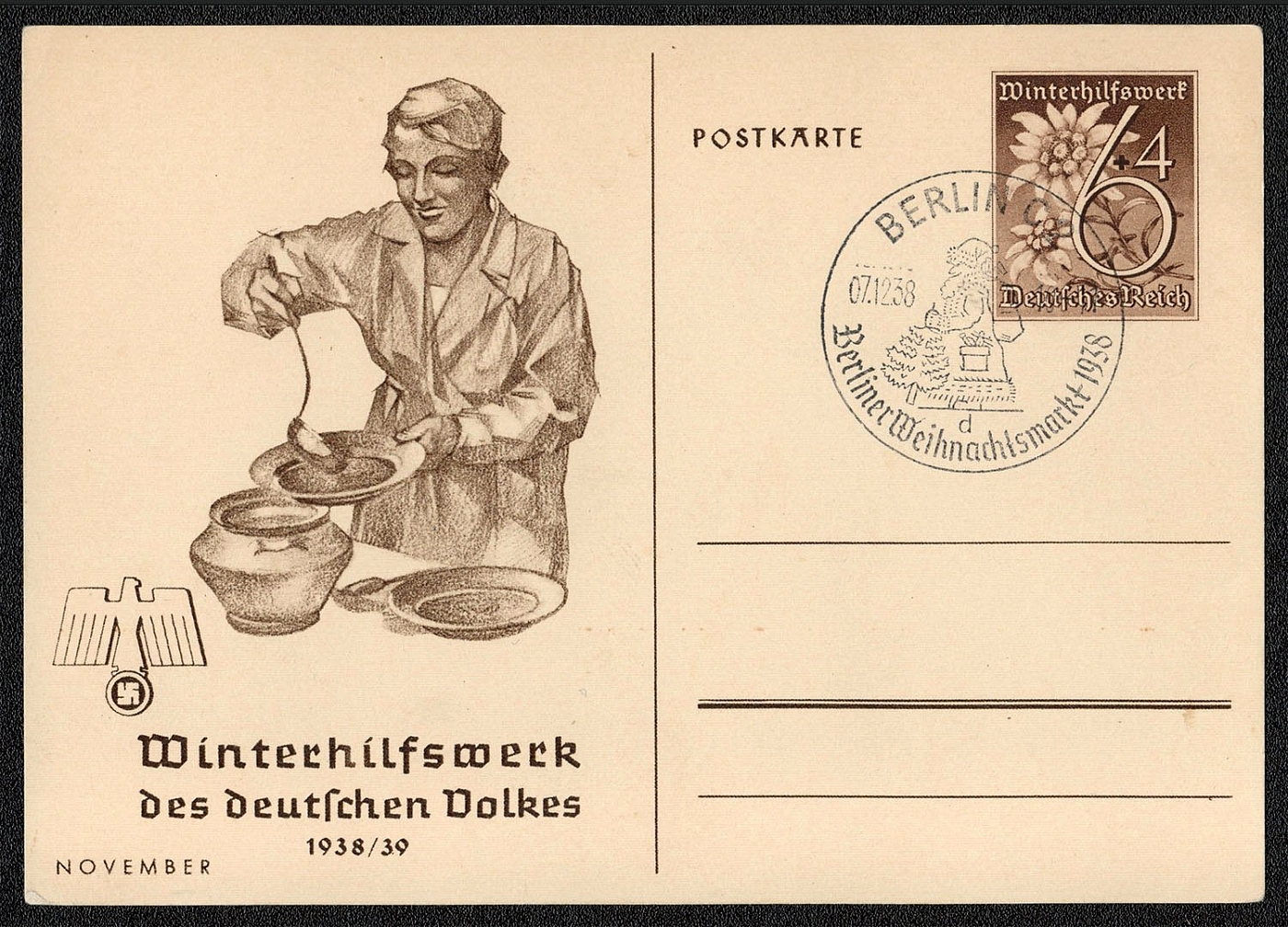
1938 Special Postcards for the 1938/39 Winter Relief Fund (5)
The imprinted stamp, an edelweiss, and the cachet depicting a woman serving stew, were designed by von Axster-Heudtlass of Berlin for the Winterhilfe postal stationery. A different card was issued each month beginning 18 October 1938. All cards were valid through 30 September 1939. Michel P 274/02 (November). The Gefalligkeitsstempel (favor cancellation) dated 7 December 1938, Berlin C2, illustrates Santa Claus and publicizes the 1938 Berliner Christmas Market.
Unsold
175
-
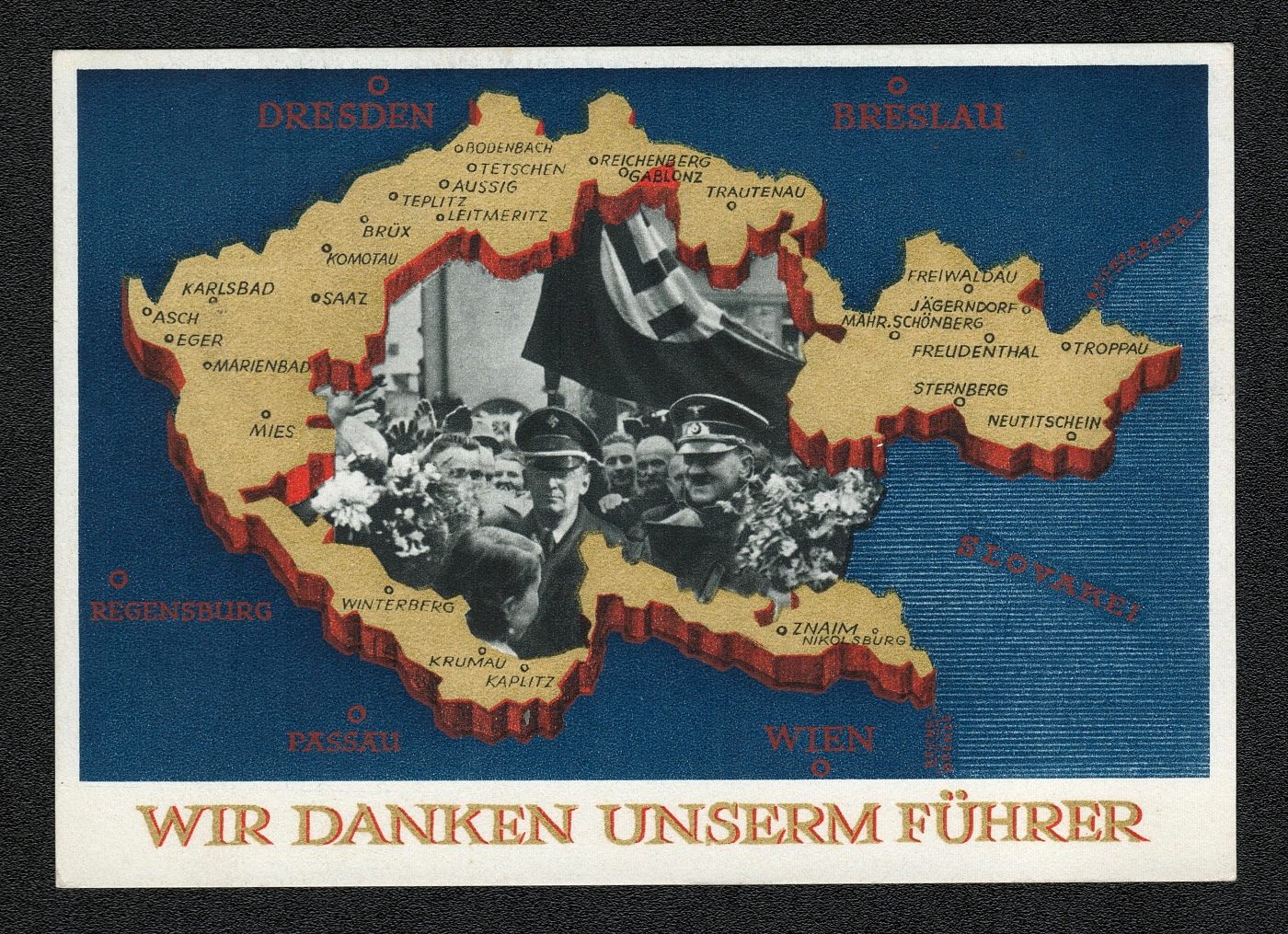
1939 Special Postcard for the Sudetenland Plebiscite Special Postmark Munich
1939 Special Postcard for the Sudetenland Plebiscite Special Postmark Munich
Unsold
176
$10
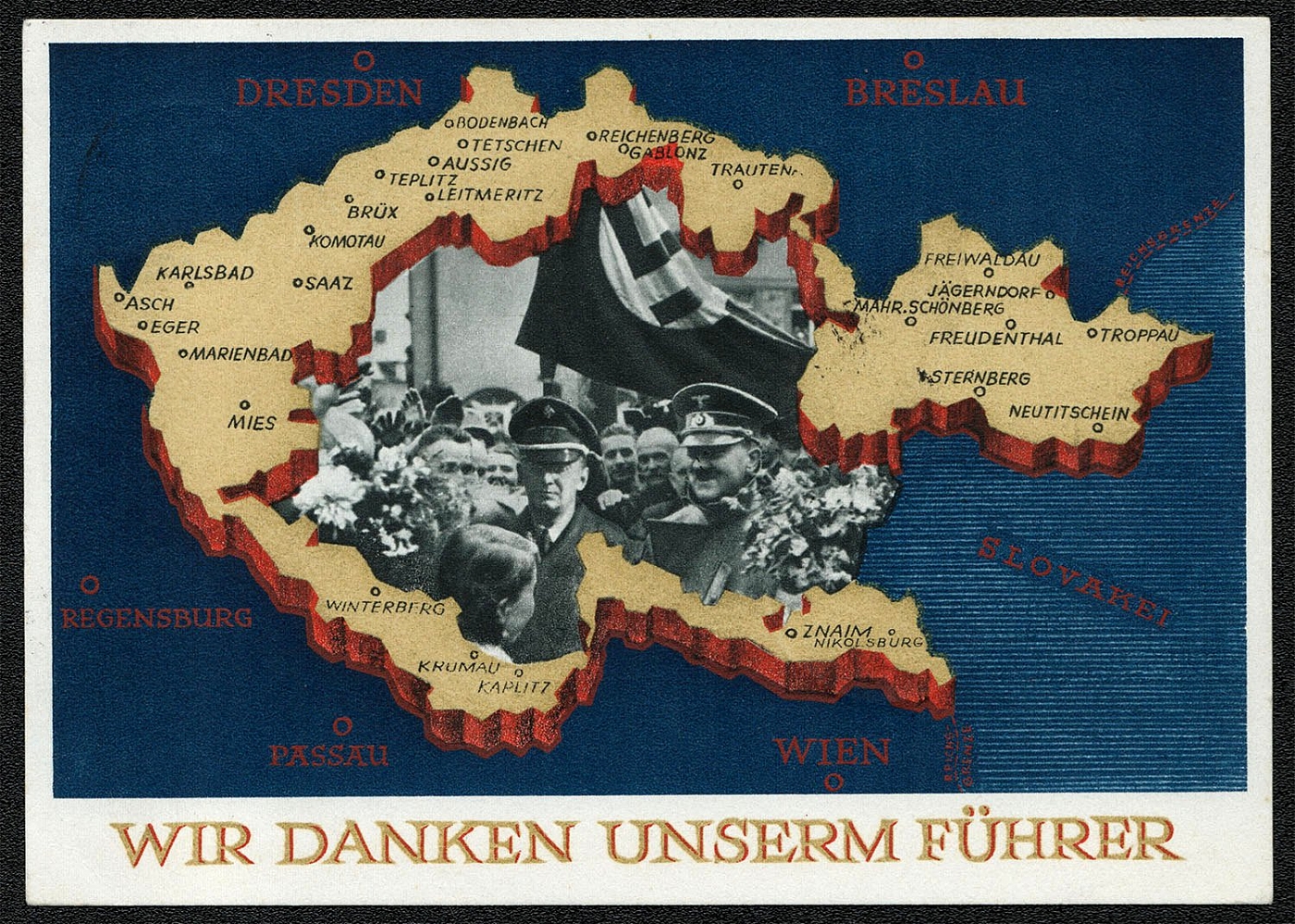
1939 1 Mai National Labor Day used in Bremen on 28 April 1939, the first day of issue
Michel P279 additionally franked with the (Tag der Nationalen Arbeit) adhesive and postally used in Bremen on 28 April 1939, the first day of issue for both the adhesive and the postal card. The card is addressed to Herr Wienberg of Syke bei Bremen, a village too insignificant to be mentioned in the 1925 edition of Baedeker’s Northern Germany, and still too small to be identified on the 1938 edition of the Strassenzustandkarte von Deutschland, the official map of Der Deutsche Automobil-Club. It does, however, appear on modern maps of Germany.
Sold for:
$10
177
$10
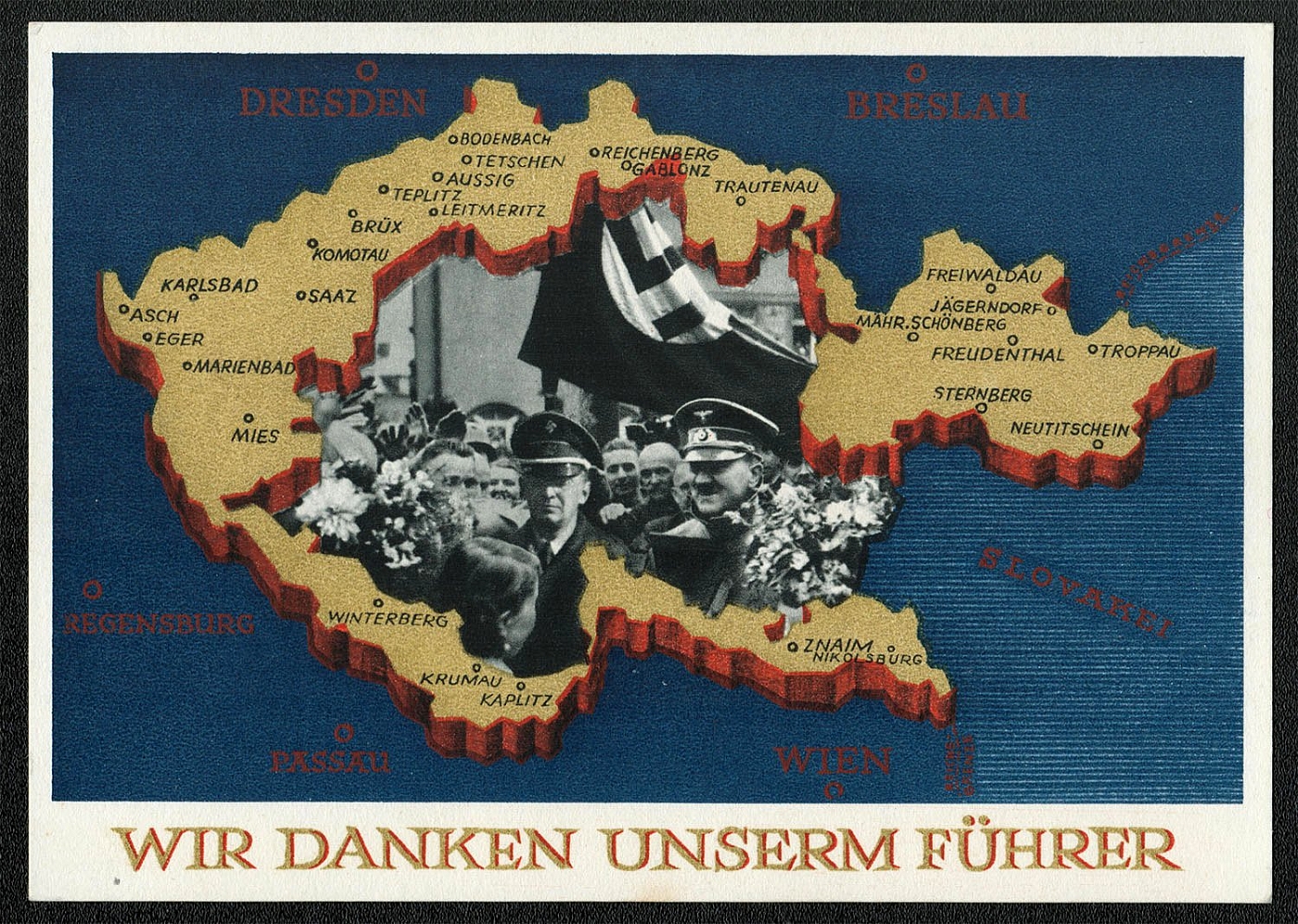
1939 1 Mai National Labor Day Special Postmark Lautawerk
Michel P279 with Lautawerk (Lausitz) 1.5.39 Gefdlligkeitsstempel (favor cancellation). The special cancellation doubles the value of the card. The best translation of “Lautawerk” this collector can come up with is “Virtue of Work.” Lausitz, however, was the name of a region in 1939 Northern Germany between the Elbe and Oder Rivers about 75 kilometers (45 miles) southeast of Dresden.
Sold for:
$10
178
$10
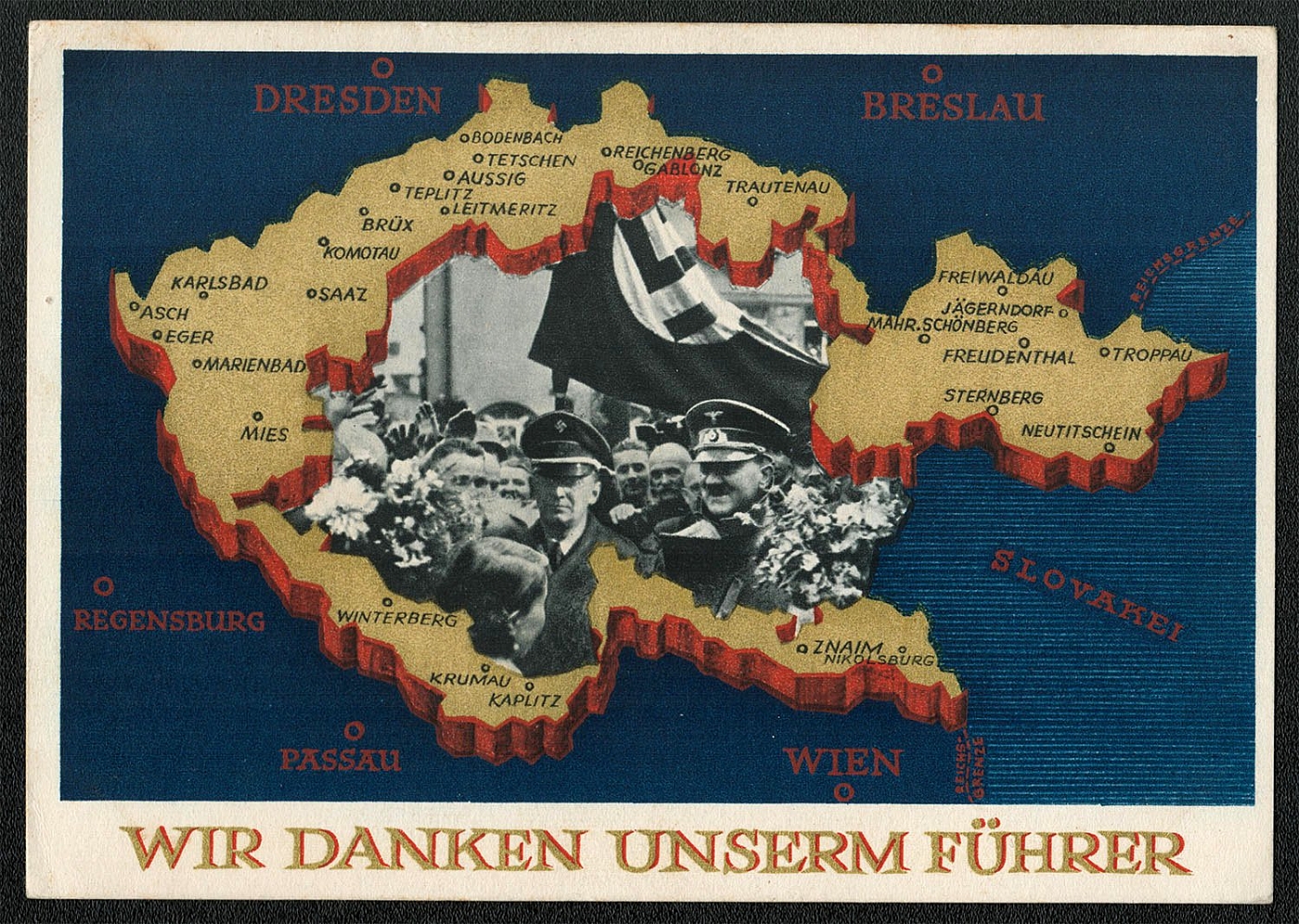
1939 1 Mai National Labor Day Postmark Mulda-Rande
Michel P279 additionally franked with the Tag der Nationalen Arbeit adhesive. The 1 May 1939 favor cancellation is postmarked Mulda-Rande (Amtsh Freiberg). Further research is needed, but the at this time it is believed that Mulda-Rande was a Freiberg postal administration district. Freiberg, at an elevation of 1365 ft., was a former silver mining town with approximately 40,000 residents in 1939. The valley of the Freiberger Mulde is nearby.
Sold for:
$10
179
-
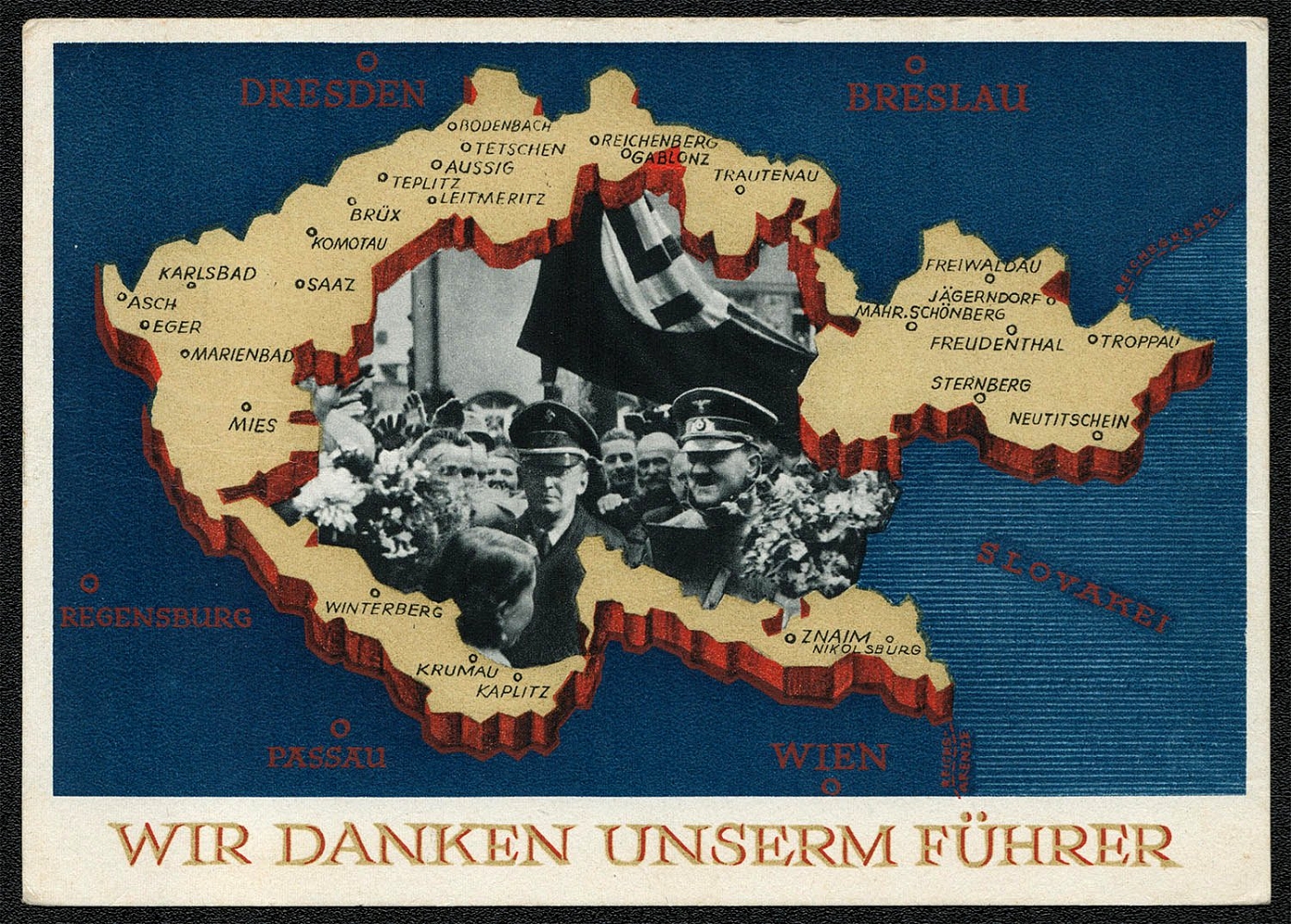
1939 1 Mai National Labor Day Postmark Berlin
Michel P279 additionally franked with the Tag der Nationalen Arbeit adhesive. Philatelically prepared, but postally used in Berlin on 1 May 1939.
Unsold
180
-
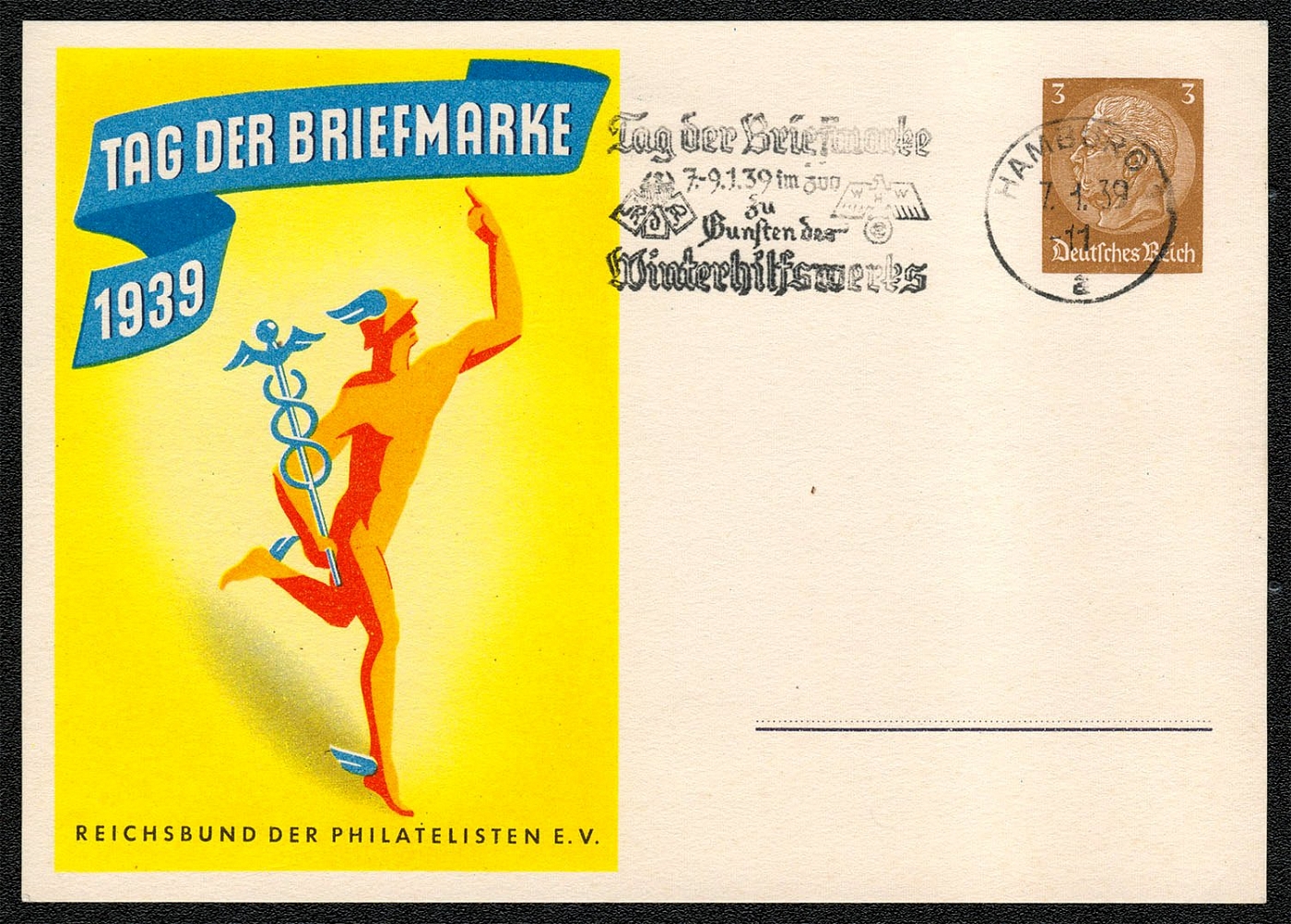
1939 Hamburg Day of the Stamp Special Postmark
Private souvenir post card issued for the Day of the Stamp by the Reichsbund der Philatelisten E. V. (National Philatelic Association) depicting Mercury, the messenger of the gods. The Werbestempel (publicity slogan cancellation) dated 7 January 1939, Hamburg 2 promotes the 7-9 January celebration and the Winterhilfswerks.
Unsold
181
-
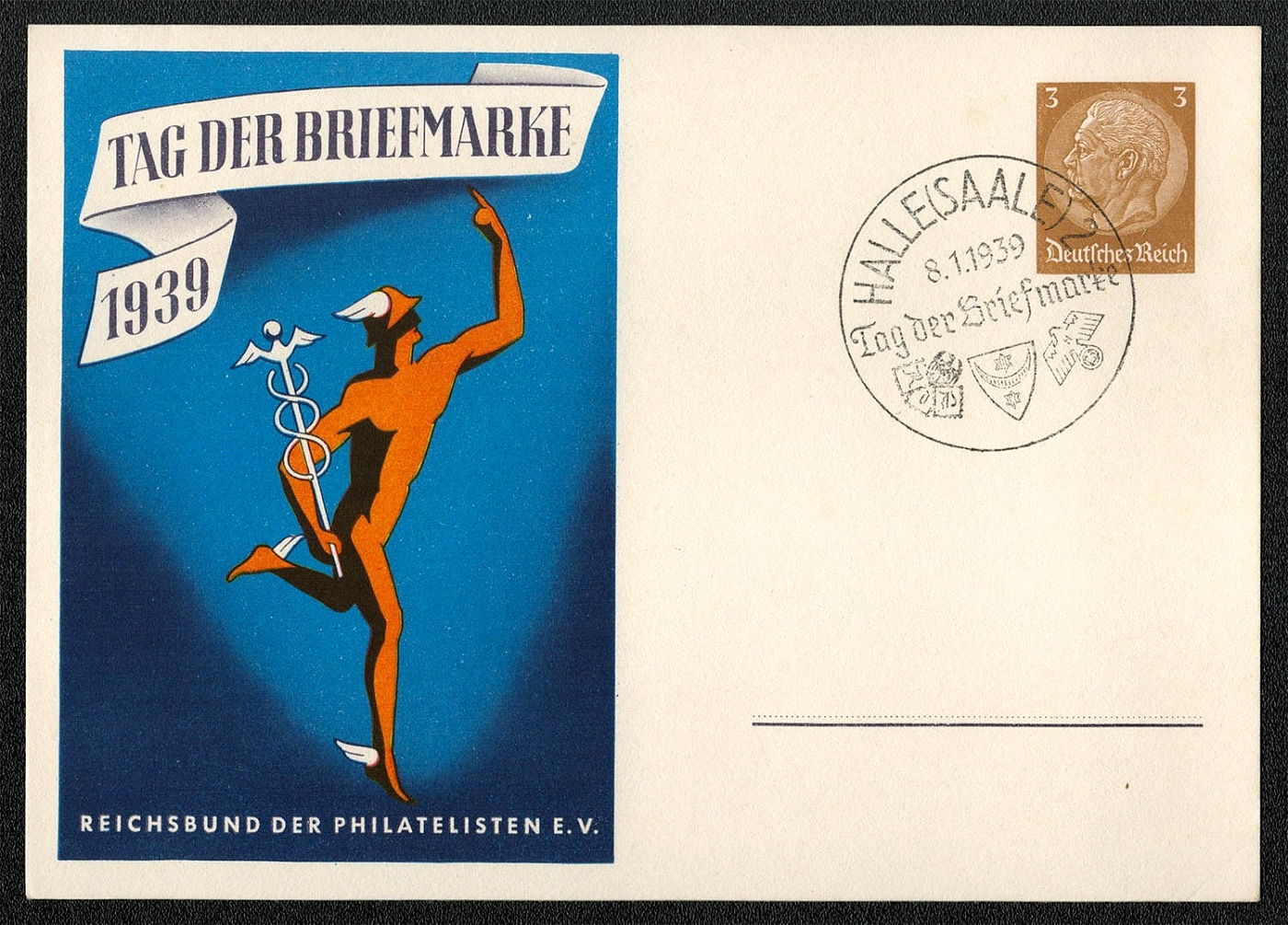
1939 Day of the Stamp Special Postmark Halle (Saale)
Private souvenir post card issued for the Day of the Stamp by the Reichsbund der Philatelisten E. V. (National Philatelic Association) depicting Mercury, the messenger of the gods. The Gefalligkeitsstempel (favor cancellation) dated 8 January 1939, Halle (Saale) publicizes the Day Of the Stamp. Essentially the same pictorial cancellation was used in 27 other towns, differing only in date, town name and Stadtwappen (coats of arms).
Unsold
182
-
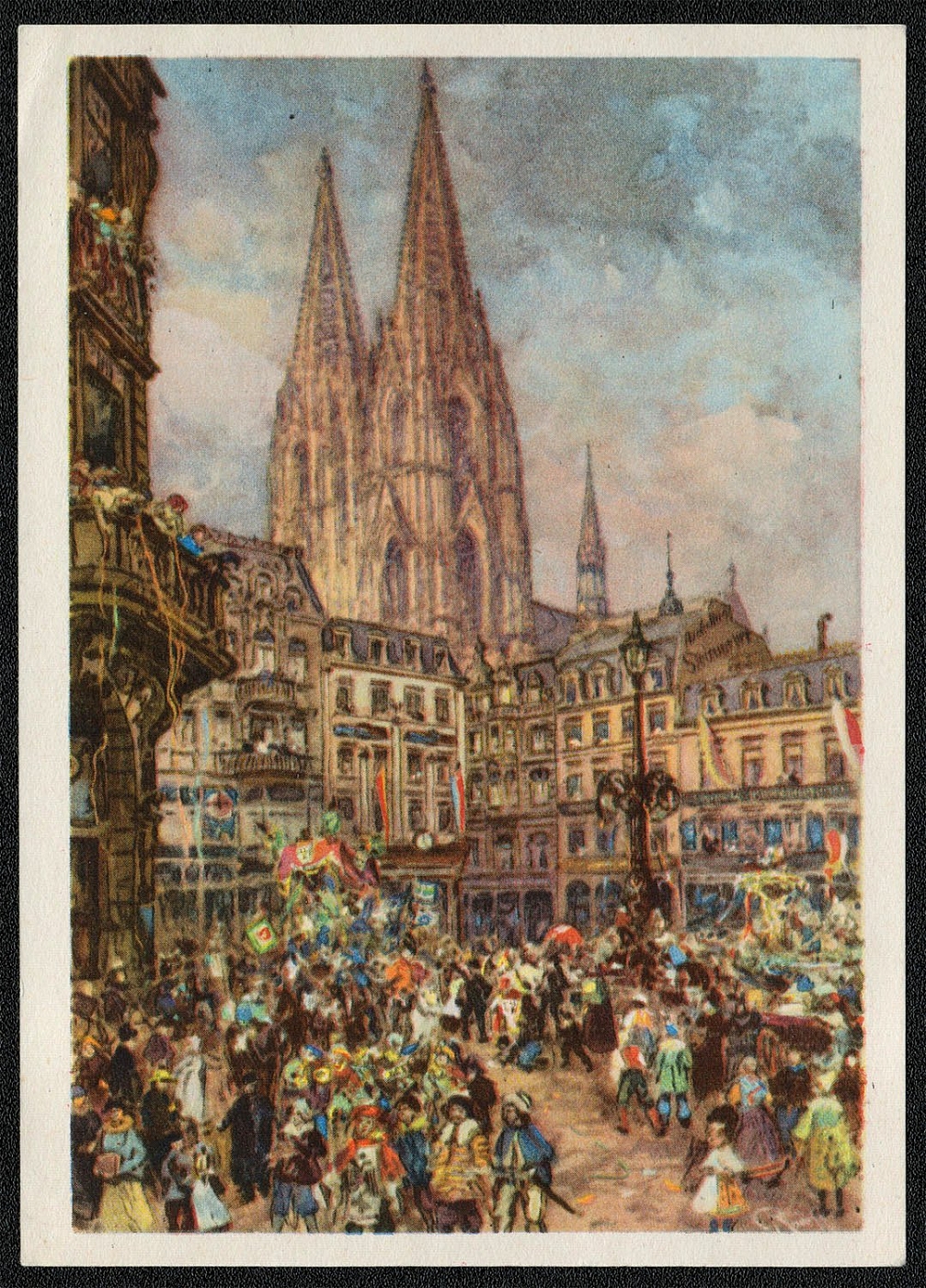
1939 Special Postcard for the Kolner Carnival Green Stamp
Depicted is a carnival scene in the Wallraffplatz, with the spires of Koln Cathedral in the background. Koln artist Rudell painted the scene.
Unsold
183
-
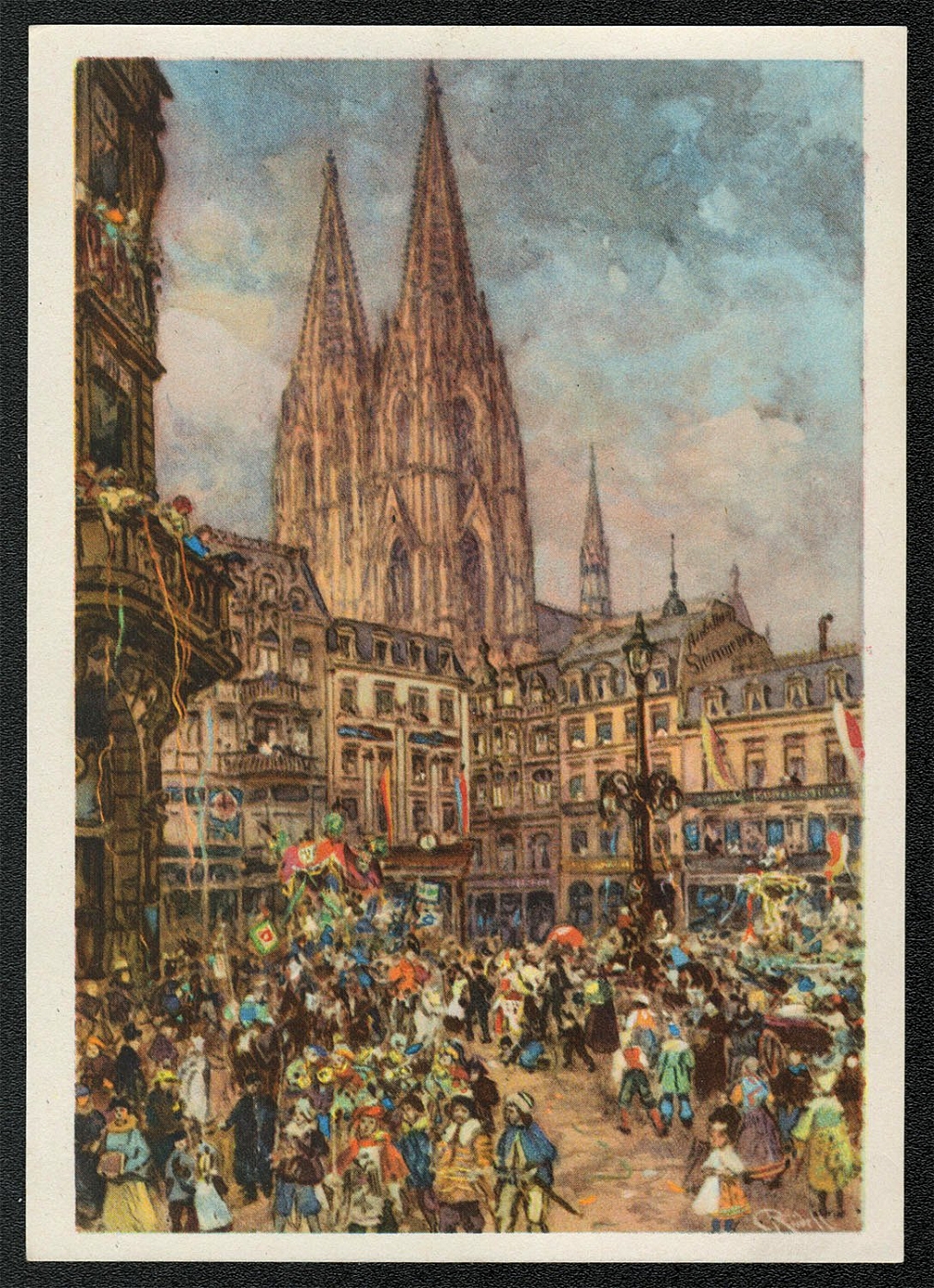
1939 Special Postcard for the Kolner Carnival Special Postmark, Green Stamp
Issued 31 December 1938 to publicize the carnival, it was on sale only in Koln and the philatelic counter in the Berlin post office. It was valid until 31 December 1939. The imprinted stamp features the coat-of-arms of Koln surmounted by a jester’s cap and bells. The stamp was printed in photogravure by the Berlin State Printing Works, and the card itself was printed by M. DuMont Schauberg of Koln. It is believed that the slogan in the upper left of the card refers to the traditional definition of carnival as a “farewell to the flesh,” i.e., the beginning of Lent. The inscription in the sonderstempel dated 21 February 1939 translates, The singing, ringing, laughing 1939 Kiiln Carnival.
Unsold
184
-
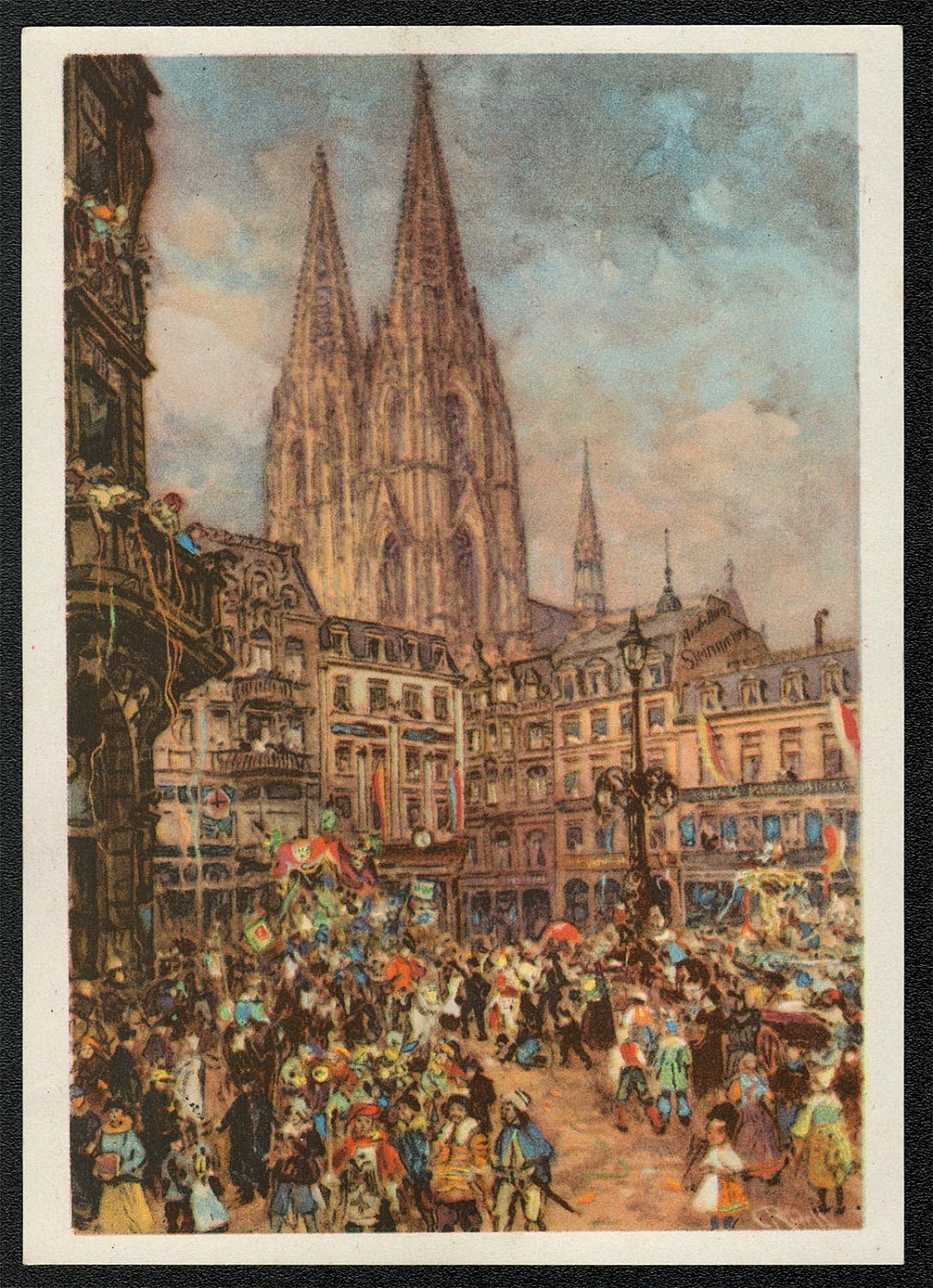
1939 Special Postcard for the Kolner Carnival Special Postmark, Brown Stamp
The exact date of issue of this, the second card, is not known, but it must have been a few days before 16 February, as it was available to receive the special postmark used during the carnival period. It was valid until 31 December 1939. The imprinted stamp features the coat-of-arms of Koln surmounted by a jester’s cap and bells. The stamp was printed in photogravure by the Berlin State Printing Works, and the card itself was printed by Schauberg of Koln. It is believed that the slogan in the upper left of the card refers to the traditional definition of carnival as a “farewell to the flesh,” i.e., the beginning of Lent. The inscription in the sonderstempel dated 21 February 1939 translates, The singing, ringing, laughing 1939 Koln Carnival. The earlier (green) printing of this card has a single line of printer’s information, the later (brown) card has a two-line divider reading, Festival postcard for the Koln Carnival. Sale price 15 Pf. (including Culture Fund). Printer: M. DuMont Schauberg, Koln.
Unsold
185
-
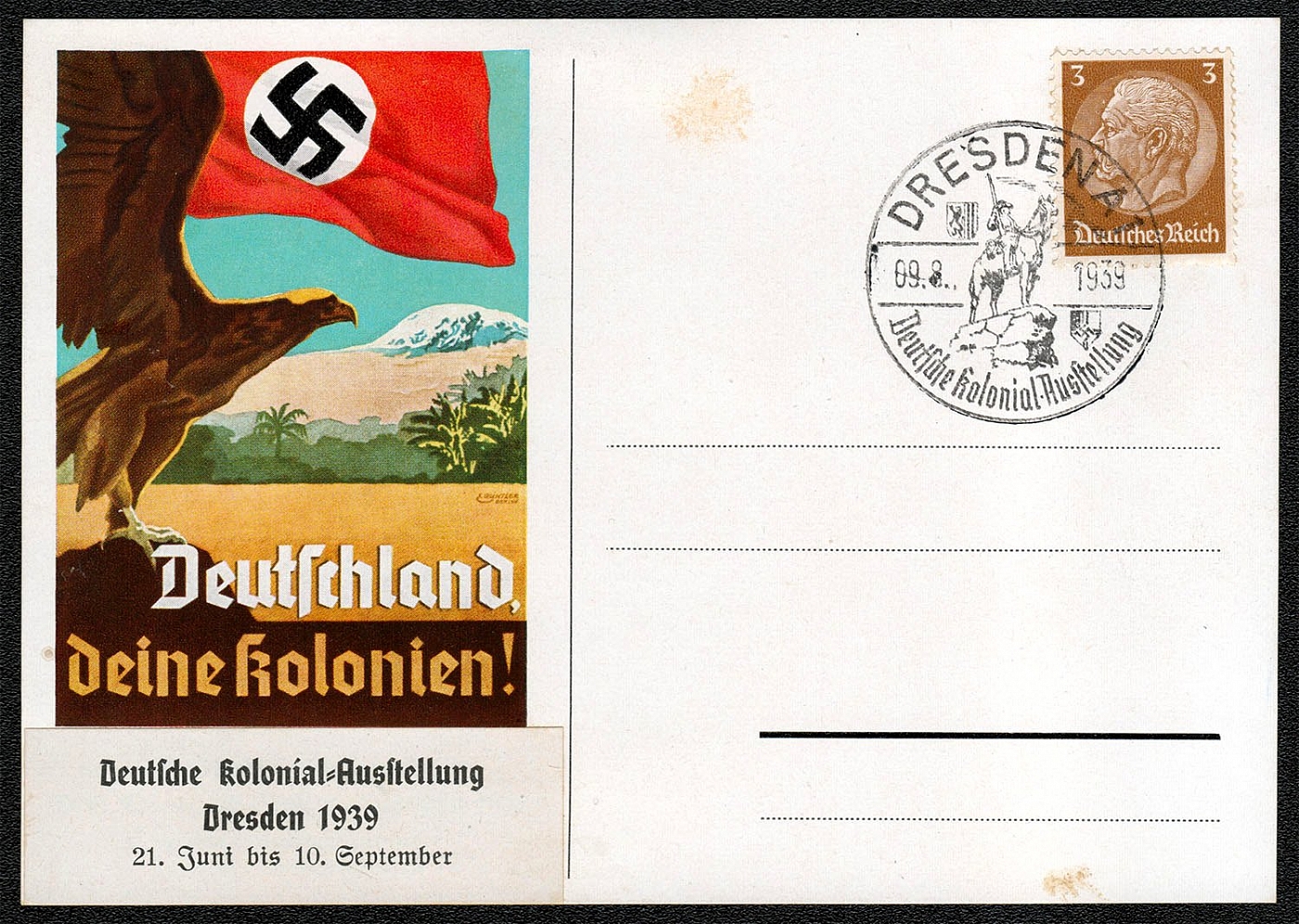
1939 Dresden German Colonies Exhibition, 21 June through 10 September
Privately printed post card with special cancellation for the Dresden German Colonies Exhibition, 21 June through 10 September 1939. Postmarked 9 August 1939. Depicted is a German eagle watching her colonies.
Unsold
186
$10
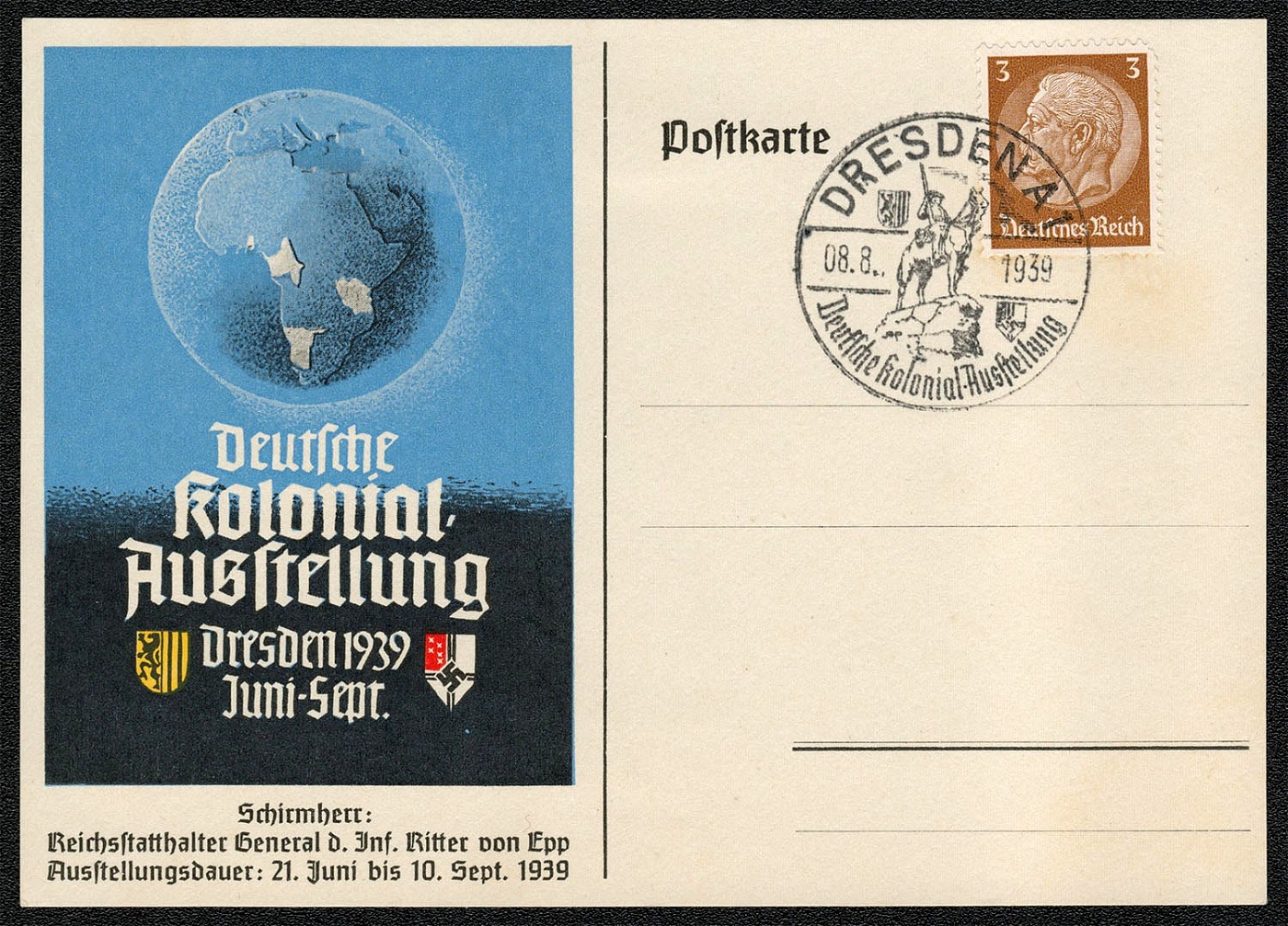
1939 Dresden German Colonies Exhibition, 21 June through 10 September (2)
Privately printed post card with special cancellation for the Dresden German Colonies Exhibition, 21 June through 10 September 1939. Postmarked 8 August 1939. Depicted is a map of Africa with German colonies marked. The card announces the Exhibition Patron is Reichsstatthalter General d. Inf. Ritter von Epp. Franz Xaver Ritter von Epp (1868-1946) was commander of the Bavarian Royal Infantry Regiment in the First World War. As of May 1934 he headed the NSDAP Office for Colonial Policy. In the final phase of the Third Reich, he belonged to Hitler’s internal party critics. He died in American internment. The special cancellation depicts the Rider of the Southwest monument in Windhuk, South-West Africa. Windhuk was originally settled by the Germans, but was captured by South African troops in 1915.
Sold for:
$10
187
-
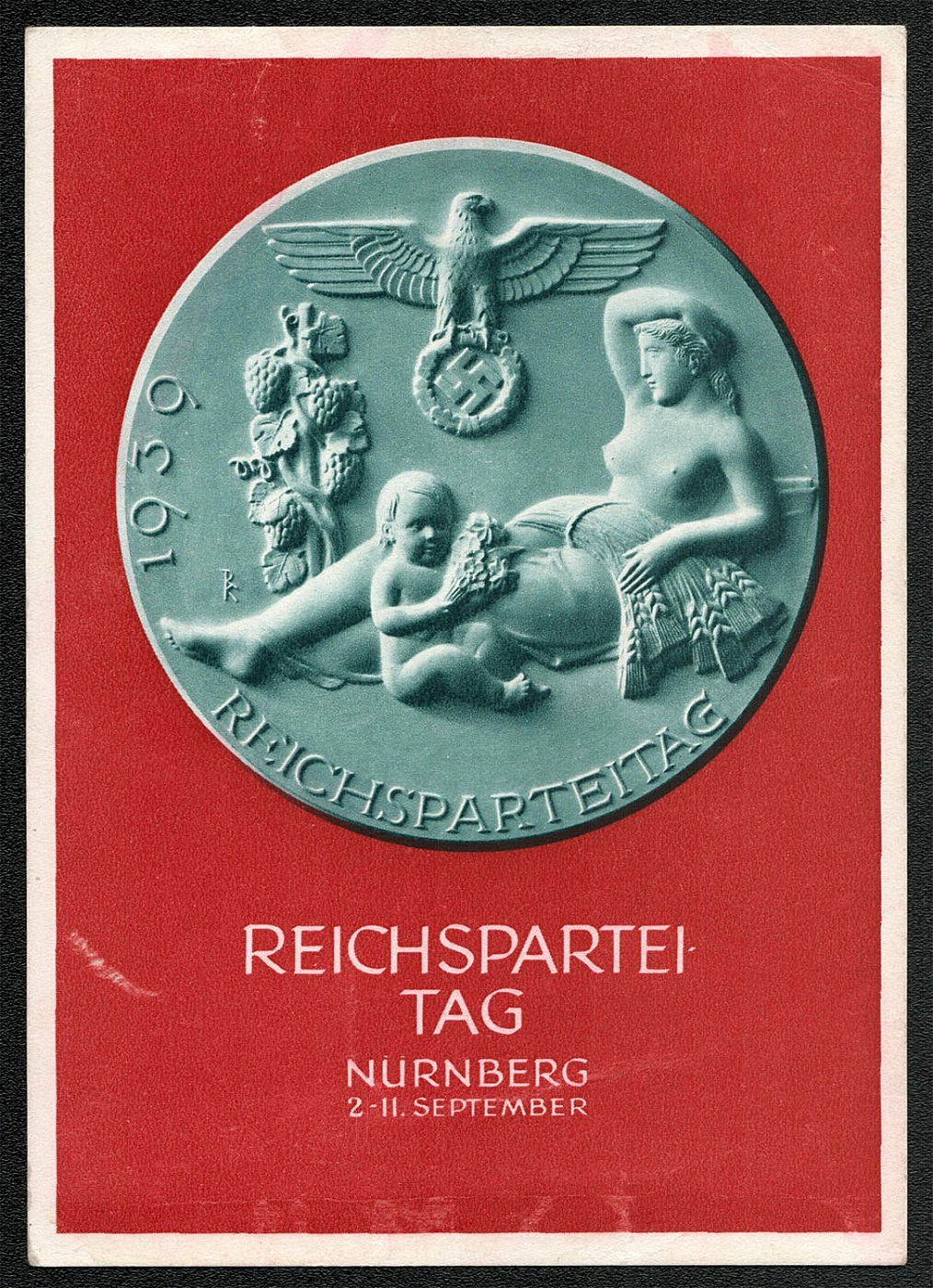
1939 Nazi Party Congress in Nurnberg Specail Postmark Conference on Germans Living Abroad
"Michel 282 postally used 25 August 1939 in Graz, Austria. The Werbestempel (publicity cancellation) is for the 7""‘ Conference on Germans Living Abroad. Although “First Days” were not particularly noted by Third Reich philatelists, it should be noted that 25 August 1939 was the first day of issue for Michel 282, a postal stationary slated for the anticipated 1939 Party Rally. The imprinted stamp depicts Hitler with the “Blutfahne” carried by Scheubner-Richner in the abortive putsch of 9 November 1923. It had since become a sacred Party symbol and was used to consecrate other flags. The design was adapted from a lino cut portrait produced the Hamburg artist Bernd Schiichert in 1937."
Unsold
188
-
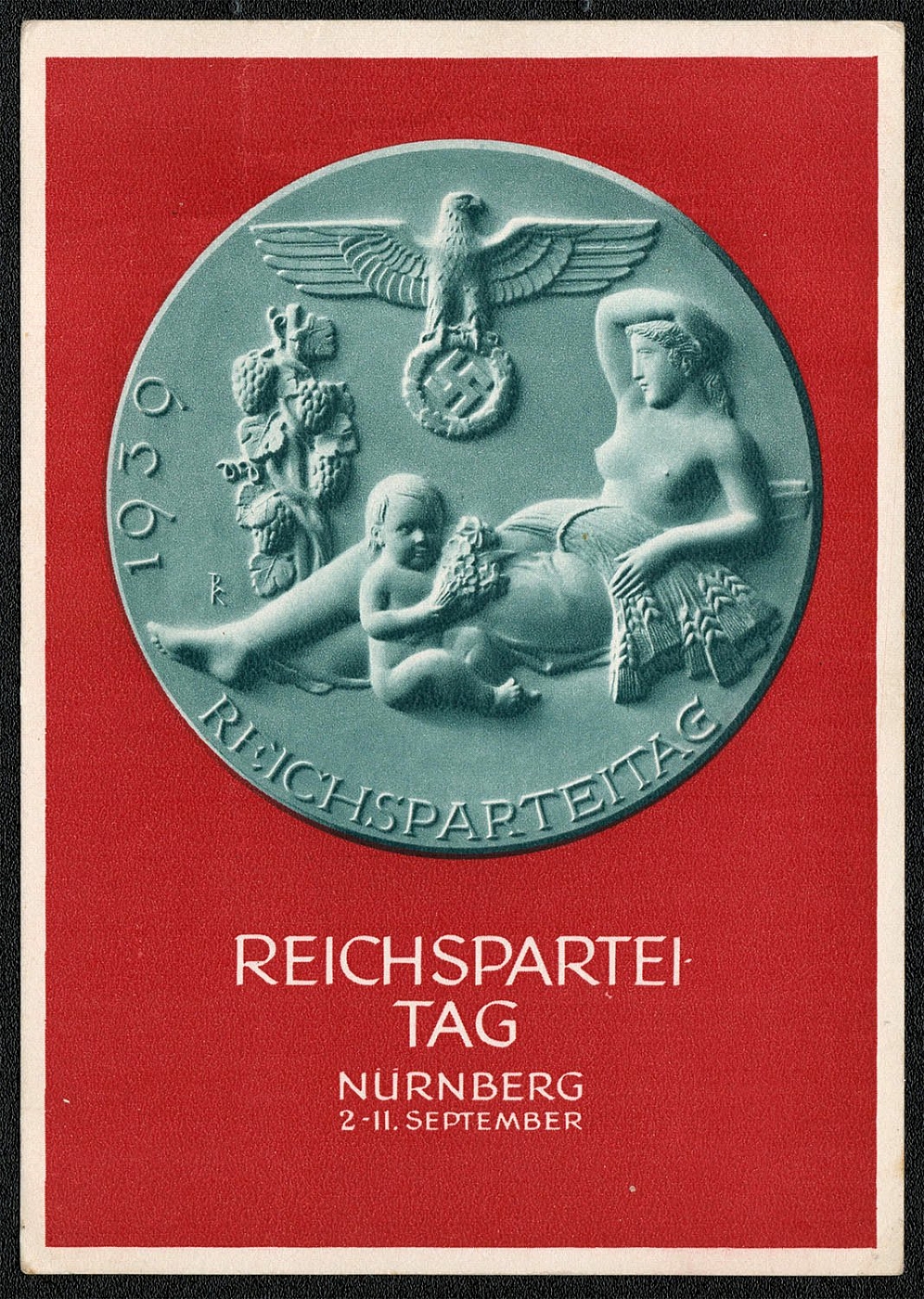
1939 Nazi Party Congress in Nurnberg Specail Postmark Greater German Reichstag
Michel 282 postally used 6 October 1939 in Berlin. The Werbestempel (publicity cancellation) is for the opening of the Greater German Reichstag. “Hitler delivered his much advertised ‘peace proposals’ in the Reichstag at noon today. I went over and watched the show, my nth. He delivered his ‘peace proposals,’ and they were almost identical with those I’ve heard him offer from the same rostrum after every conquest he has made since the march into the Rhineland in 1936. Although they were the fifth at least, and just like the others, and just as sincerely spoken, most Germans I’ve talked to since seem aghast if you suggest that perhaps the outside world will put no more trust in them than they have learned by bitter experience to put in the others.”
Unsold
189
-
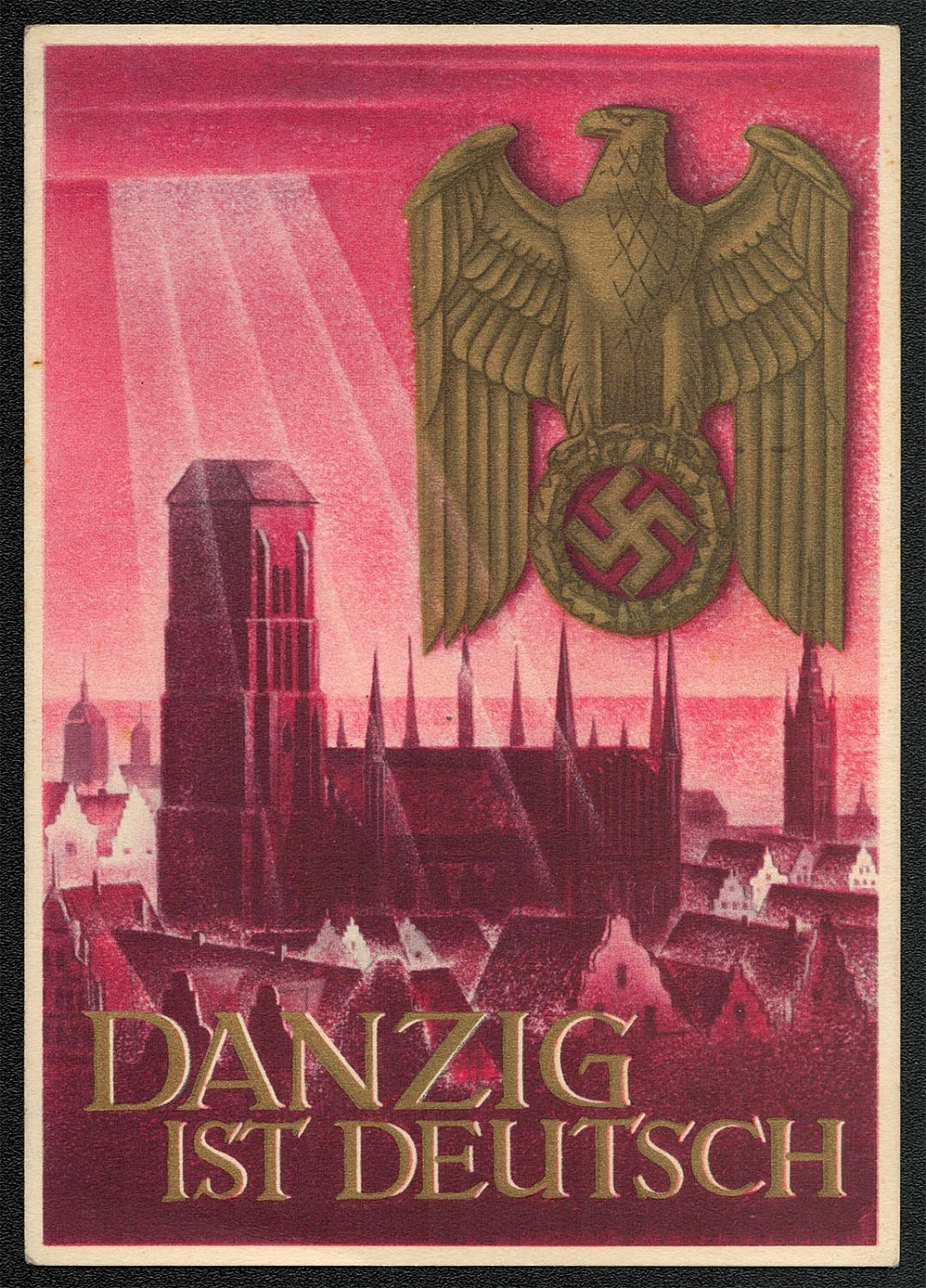
"1939 Return of Danzig to the Reich ""Danzig is German"""
Issued in the latter part of 1939 as a Sonderkarte fiir das Kriegs Winterhilfwerk (Special Card for the Wartime Winter Relief) with the same imprinted stamp as the earlier Michel P 285 series. The card was designed by Gottfried Klein and printed by the NSDAP Central Publishers, Miinchen.
Unsold
190
$30
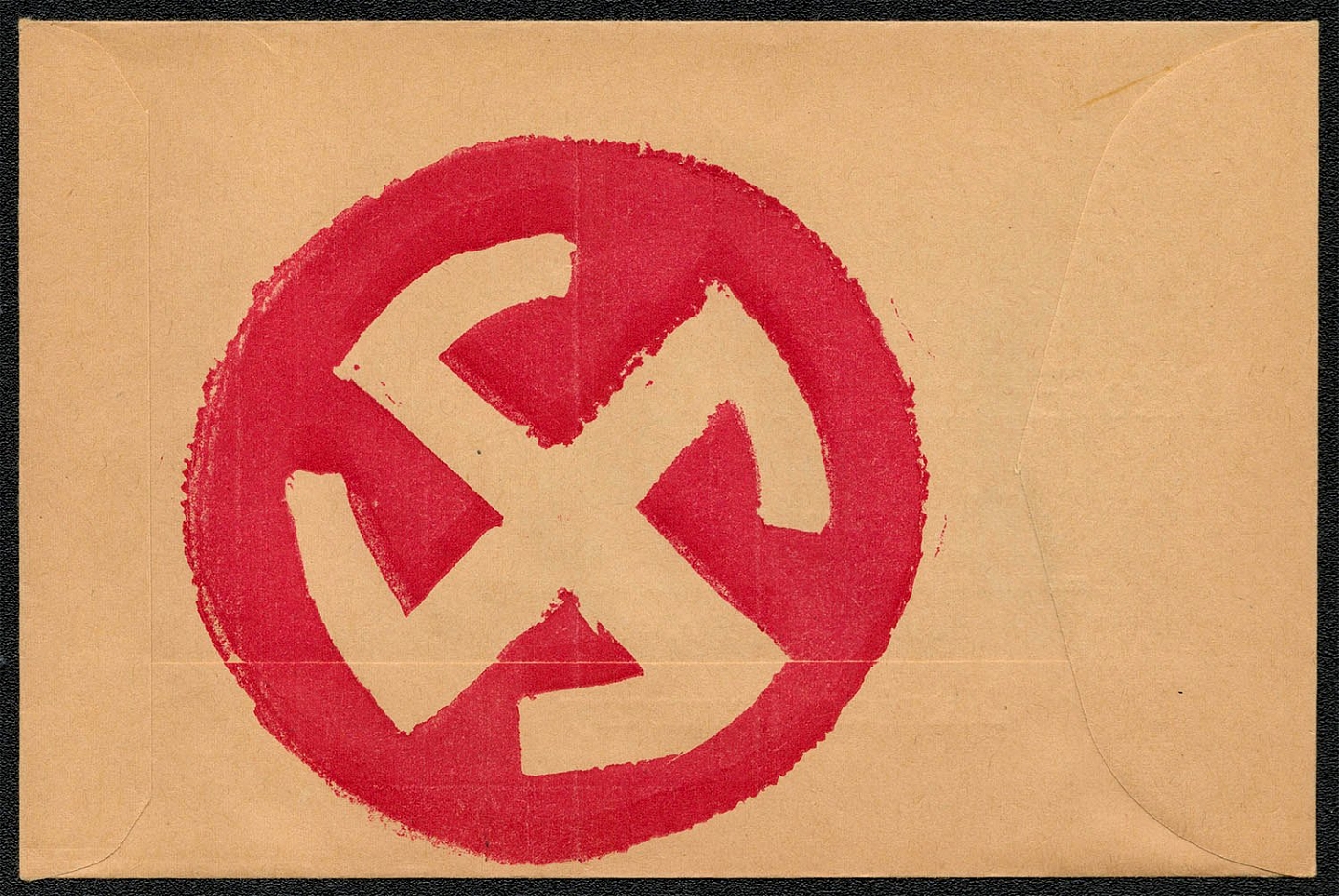
1939 Military post cover to Munich with a swastika on the back
Berlin, September 1, 1939 At six a.m. Sigrid Schultz—bless her heart—phoned. She said: “It’s happened.” I was very sleepy— my body and mind numbed, paralyzed, I mumbled: “Thanks, Sigrid,” and tumbled out of bed. The war is on! It’s a “counter-attack”! At dawn this morning Hitler moved against Poland. It’s a flagrant, inexcusable, unprovoked act of aggression. But Hitler and the High Command call it a “counterattack.” A gray morning with overhanging clouds. The people in the street were apathetic when I drove to the Rundfunk for my first broadcast at eight fifteen a.m. Across from the Adlon the morning shift of workers was busy on the new I. G. Farben building just as if nothing had happened. None of the men bought the Extras which the newsboys were shouting. Along the east-west axis the Luftwaffe were mounting five big anti-aircraft guns to protect Hitler when he addresses the Reichstag at ten a.m. Jordan and I had to remain at the radio to handle Hitler’s speed for America. Throughout the speech, I thought as I listened, ran a curious strain, as though Hitler himself were dazed at the fix he had got himself into and felt a little desperate about it. Somehow he did not carry conviction and there was much less cheering in the Reichstag than on previous, less important occasions.
Sold for:
$30
191
$10
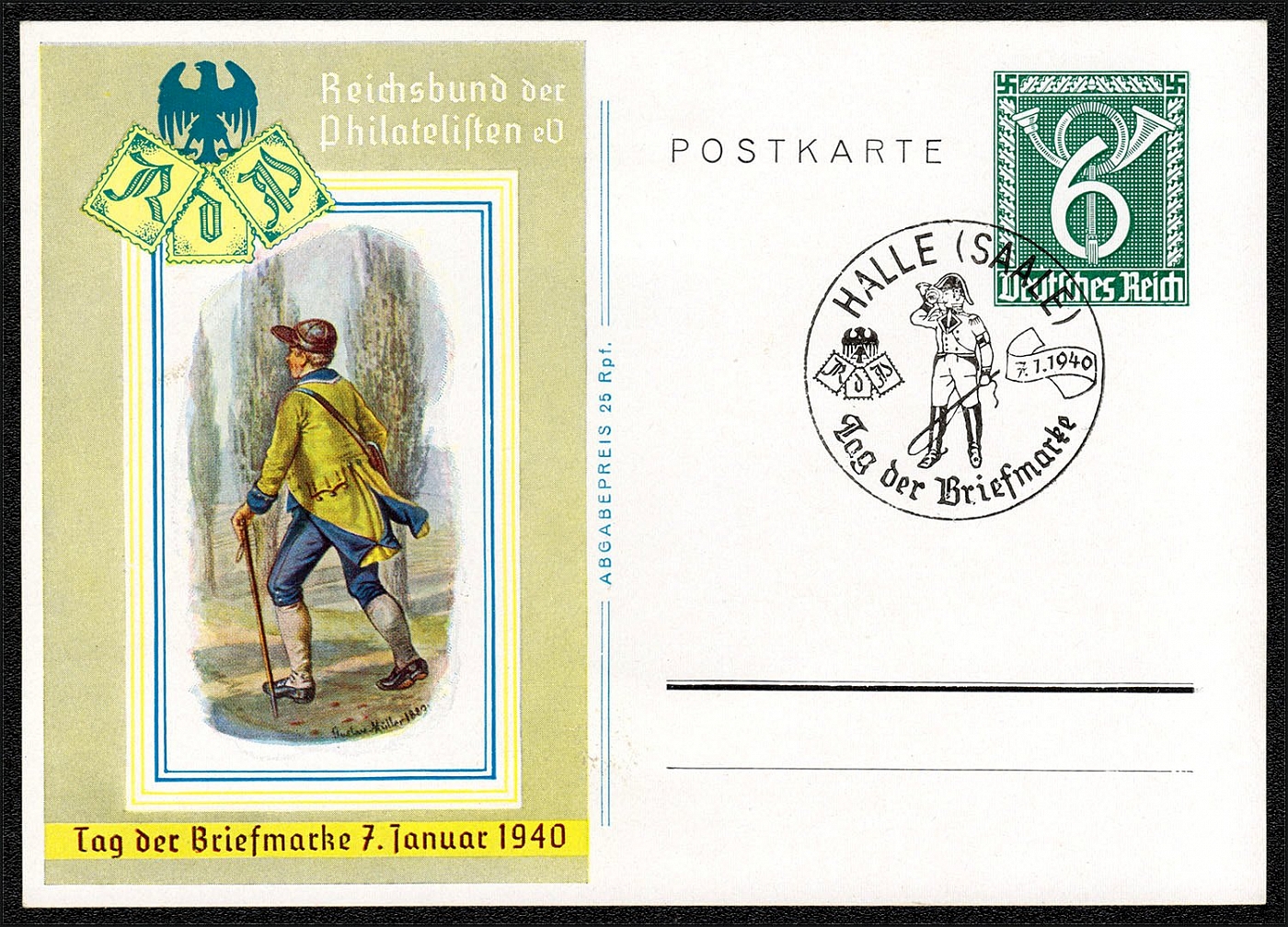
1940 Halle (Saale) Special Card for the 1940 Day of the Stamp
"Sponsored by the (National Philatelic Association) Depicted is a 19,h century postal carrier. It was designed by Gustav Muller. The card sold for 25 Rpf. The Werhestempel (publicity slogan cancellation) postmarked 7 January 1940, Halle (Saale), depicts a Saxon postillion blowing his posthorn. It was also used in twenty-eight other towns from the б""1 to the 7U1."
Sold for:
$10
192
-
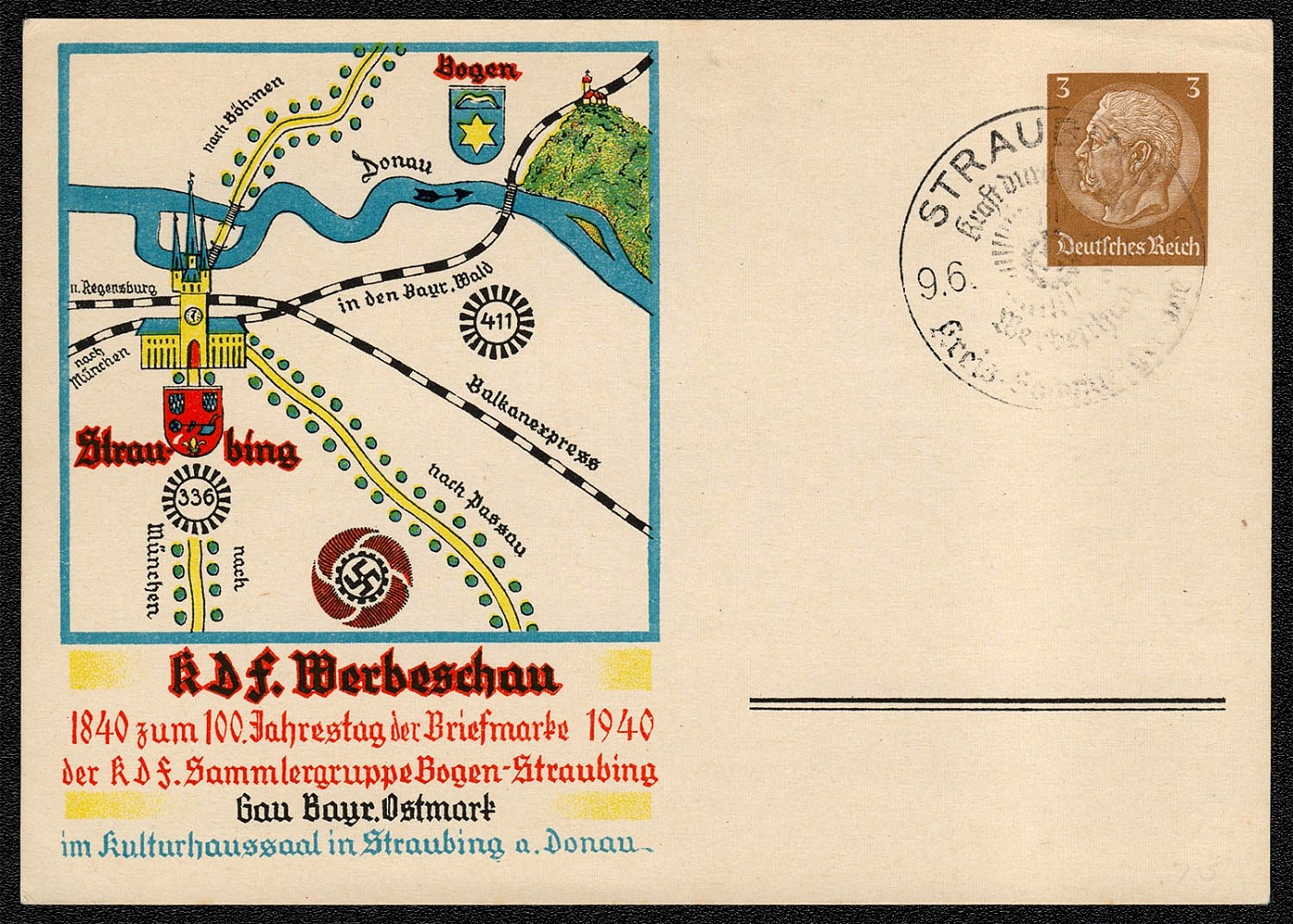
1940 Strength through Joy Publicity Show Commemorating the 100 Anniversary of the Postage Stamp
Strength through Joy Publicity Show Commemorating the 100,h Anniversary of the Postage Stamp, 1840-1940. Sponsored by the Bogen-Straubing KdF Collector’s Group Bayern District, Austria in the Cultural House Hall in Straubing am Donau 9 June 1940. Private postcards such as this (Michel PP 122) were semi-official postal stationeries using imprinted definitives. The sponsoring organization added their own cachet. (Note the Bogen Coat of Arms included a Star of David!)
Unsold
193
$20
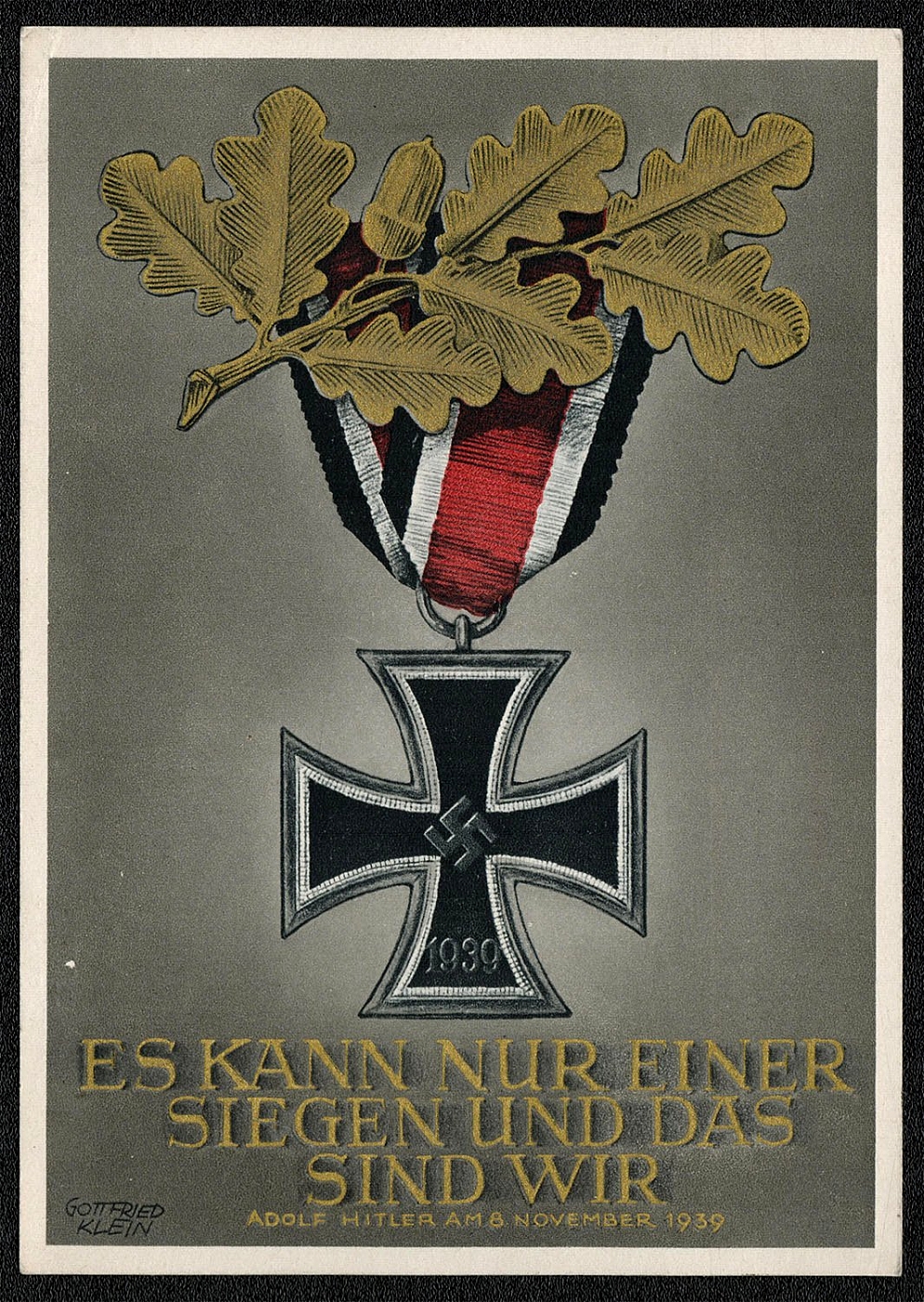
"1940 The Iron Cross ""Only one of us can be the victor and that is we"""
Michel P 290 issued 12 July 1940. valid until 31 December 1941. An official postal stationery card designed by Gottfried Klein. The inscription reads: “Only one of us can be the victor and that is we.” It is a quote from Hitler’s speech of 8 November 1939. The imprinted stamp (6+16 Rpf) is similar to the adhesive issued for the 1939 Day of National Labor. This card is considered one of the best designed and most striking of all Third Reich postal cards. There was no special postmark for the card, but the one most associated with it is the 19 July 1940 Berlin - Grossdeutscher Reichstag. (See overleaf.)
Sold for:
$20
194
-
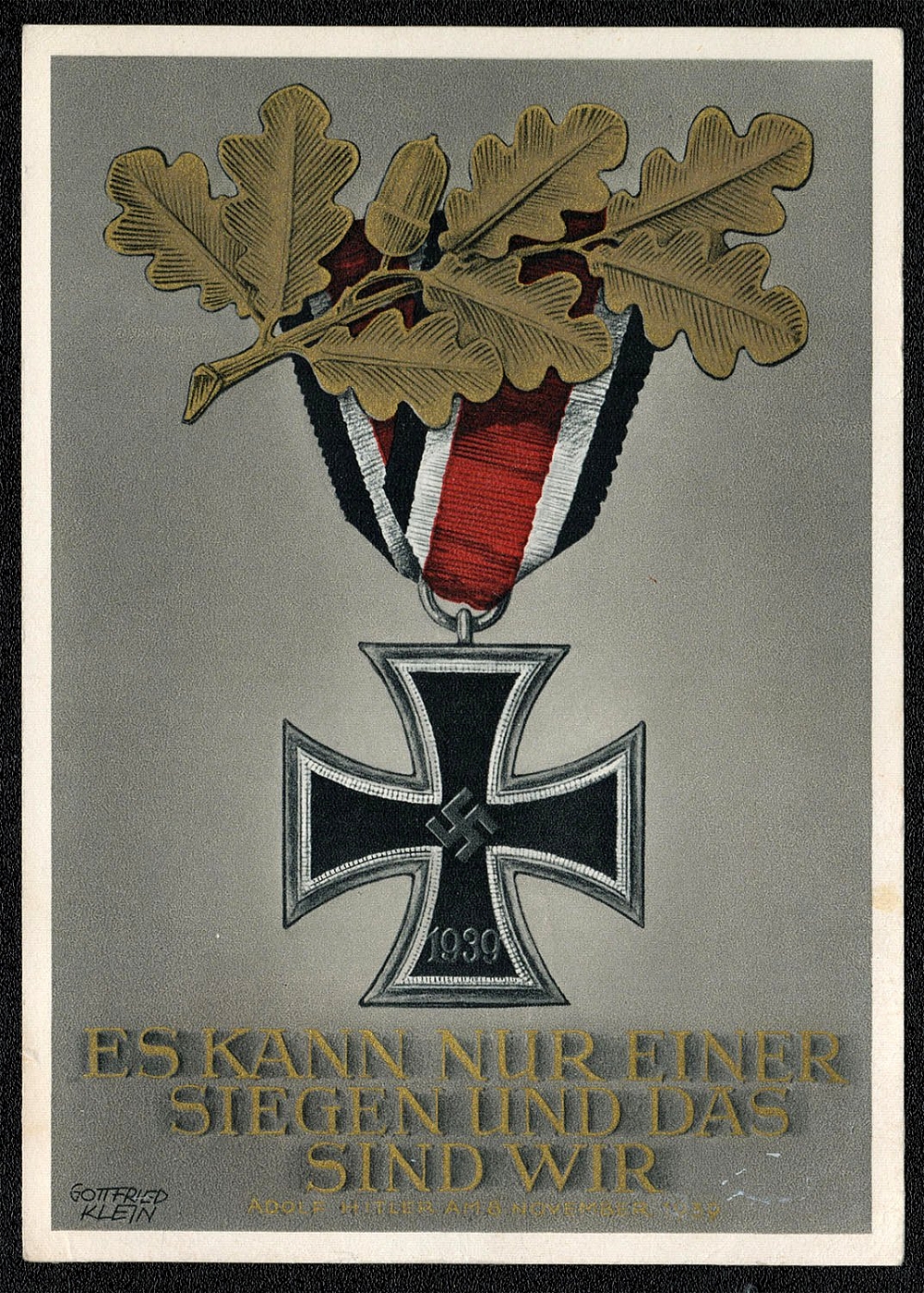
"1940 The Iron Cross ""Only one of us can be the victor and that is we"" Special Postmark Berlin"
The correspondence side of Michel P 290, an official postal stationery card designed by Gottfried Klein. Issued 12 July 1940. valid until 31 December 1941. The imprinted stamp (6+16 Rpf) is similar to the adhesive issued for the 1939 Day of National Labor. There was no special postmark for the card, but the one most associated with it is the above Berlin Gefalligkeitsstempel (favor cancellation) of 19 July 1940 commemorating the Greater German Reichstag.
Unsold
195
-
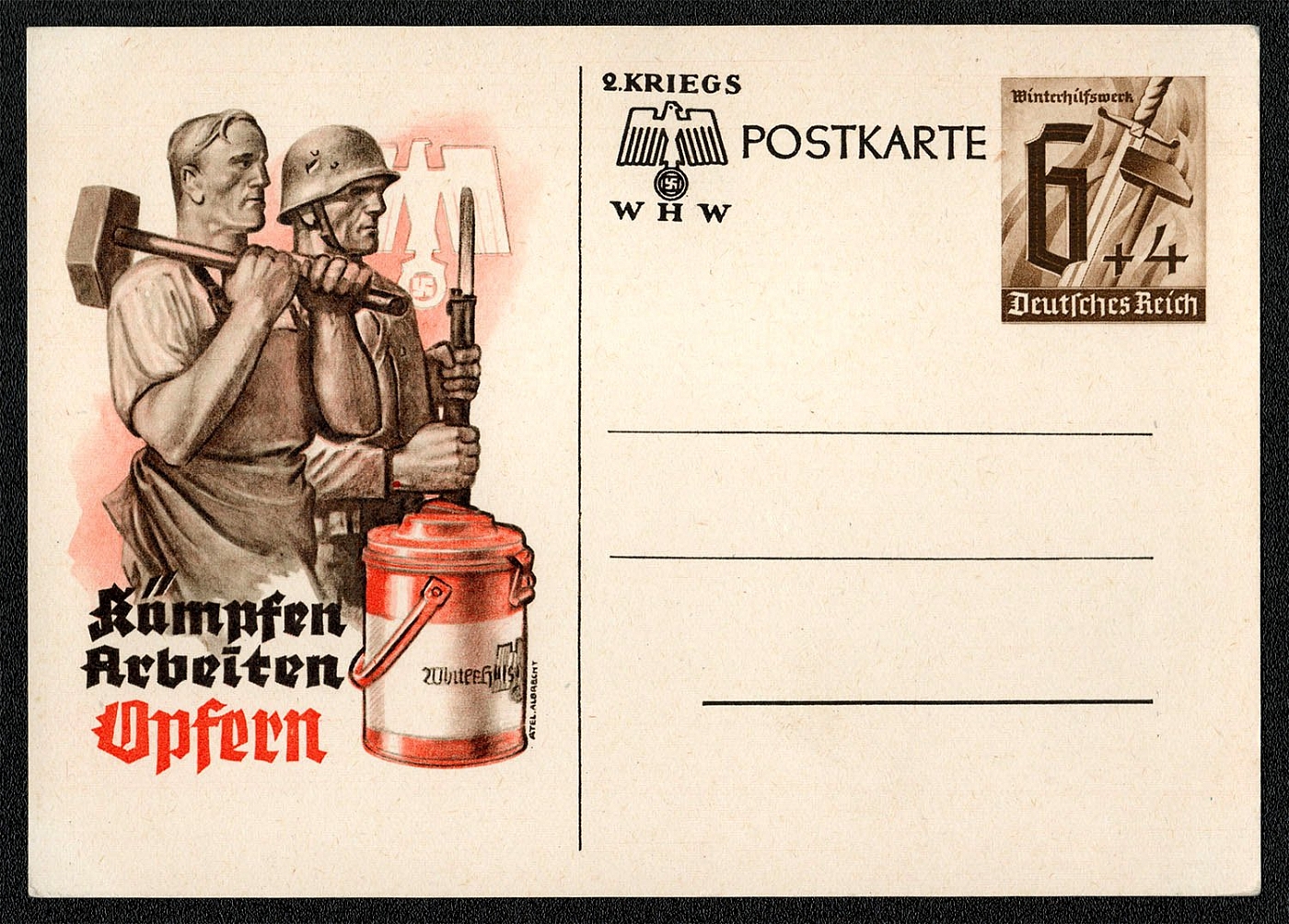
1940 Special Postcard for the 1940 Winter Aid)
Michel P 291 issued 1940. This postal card was designed by Atelier Albrecht, and was printed on three types of cardstock: white, cream (above), and chamois. Depicted is a worker and soldier with a street collection can in the foreground. The inscription translates Fight/Work/Sacrifice. The hammer and sword imprinted stamp was designed by Lothar Wust.
Unsold
196
-
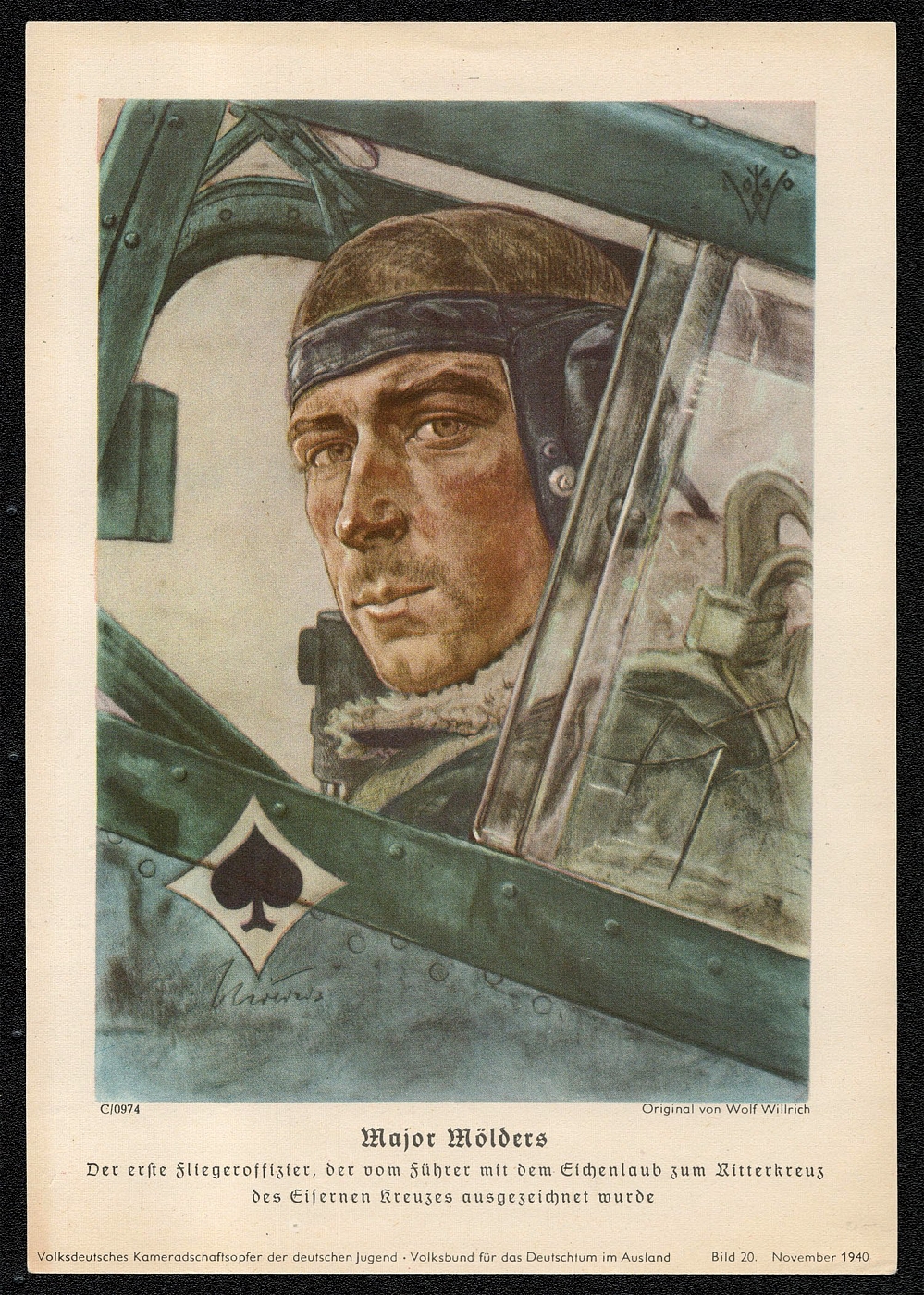
197
-
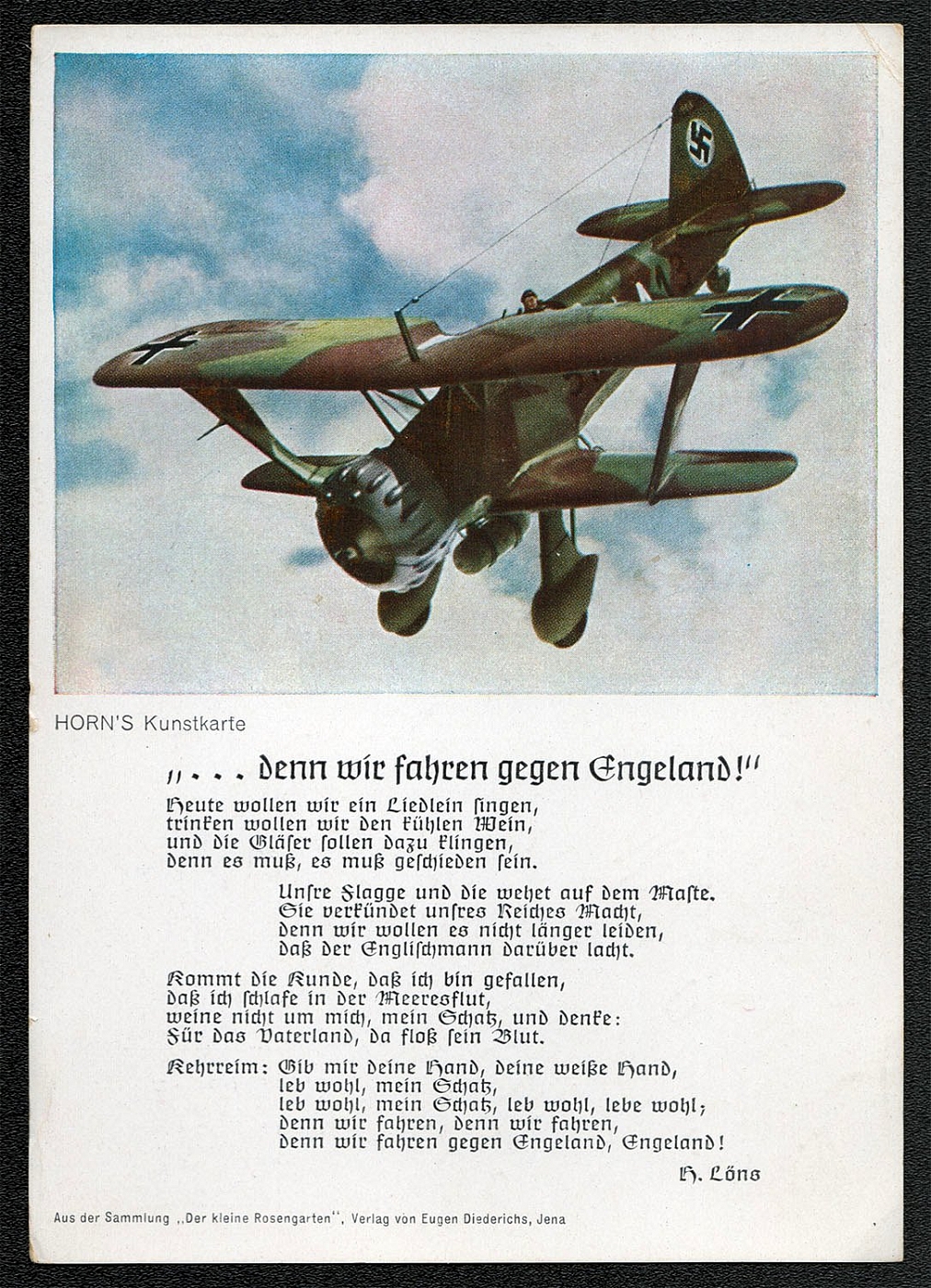
1940 France during the German occupation, dated 6 November 1940, addressed to the NSDAP Ortsgruppe in Neckarsulm ... but never mailed.
“. . . because we are travelling towards England!” We will sing songs today, we will have a cool, refreshing drink, And be obliged to clink the drinking glass, for she must, she must be separated. . . One of a series of 12 cards published by Hom’s Kunstpostkarte (Art Post Cards) A remembrance for living and historical documents for future generations. The card was written in France during the German occupation, dated 6 November 1940, addressed to the NSDAP Ortsgruppe in Neckarsulm ... but never mailed. Depicted is the Ils 123, a single-seater first produced in 1935 by Henschel Flugzeugwerke A.G. as a bomber and ground support aircraft. It was outdated by 1940, but continued in service until late 1944 on the Eastern Front, and as a trainer. It had a maximum speed of 200 mph and a ceiling of 29,500 feet. Armament consisted of two machine guns or two 20 mm cannon, plus a 1,000 lb. bomb load.
Unsold
198
-
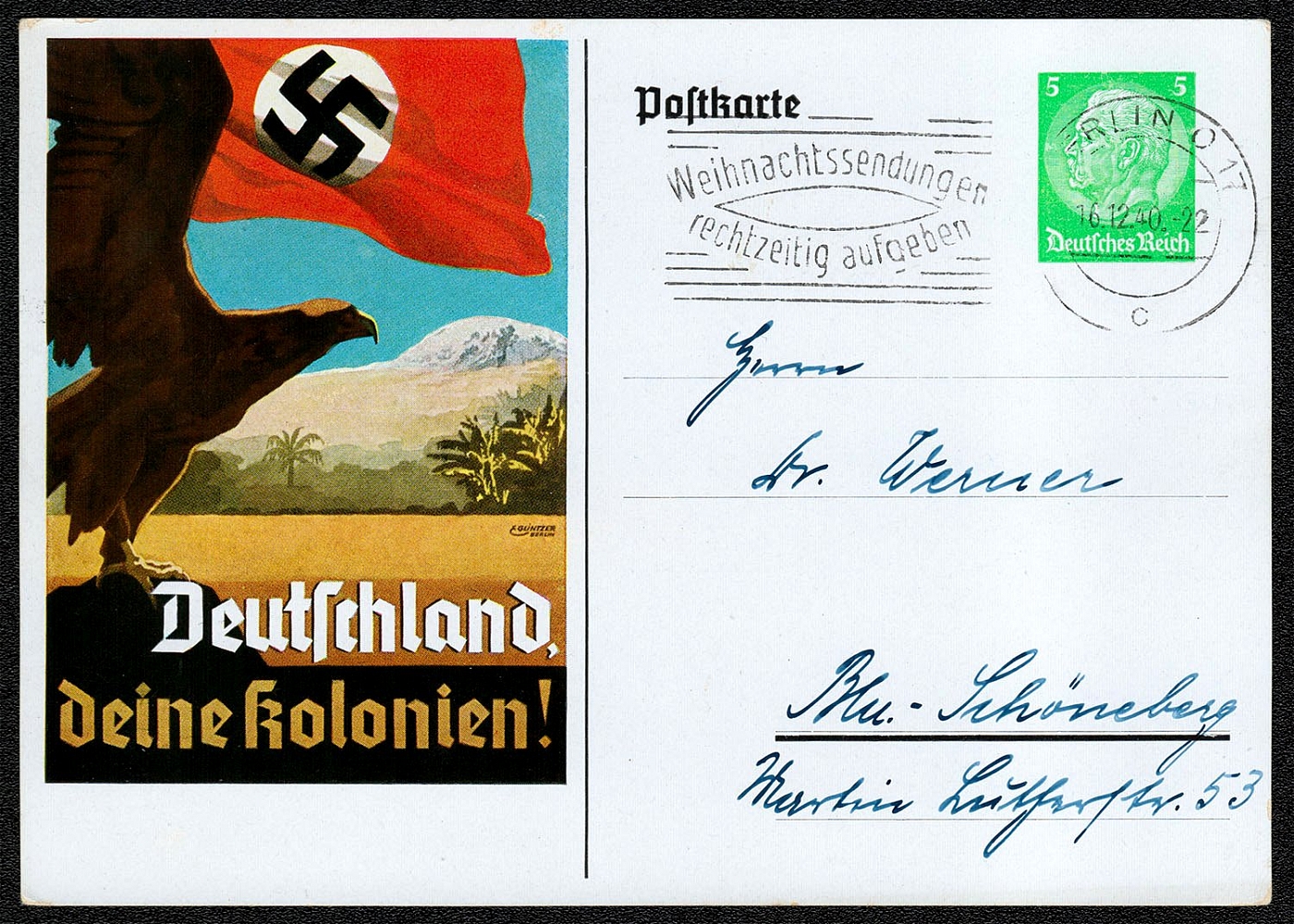
"1940 Privately printed Postcard ""Germany, Your Colonies!"""
(Germany, Your Colonies!) Privately printed post card for the colonial exhibitions that began in 1934 and continued into 1940. Depicted is a German eagle watching her colonies. Postally used and mailed in the Berlin 017 branch on 16 December 1940. The cancellation reads: Give Christmas mailings plenty of time.
Unsold
199
-
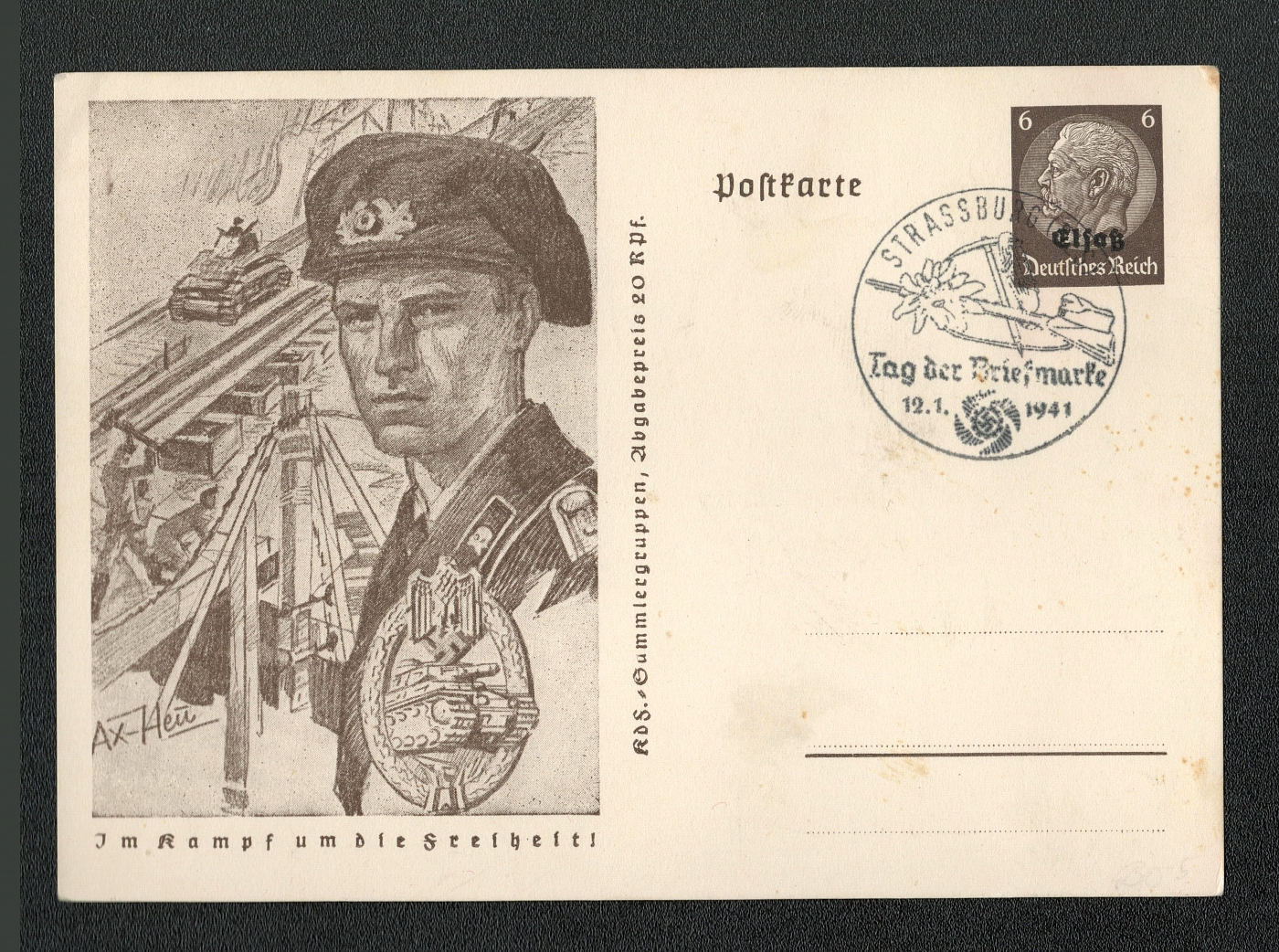
1941 Tankman, occupation of Alsace Special postmark Strassburg
1941 Tankman, occupation of Alsace Special postmark Strassburg
Unsold
200
$10
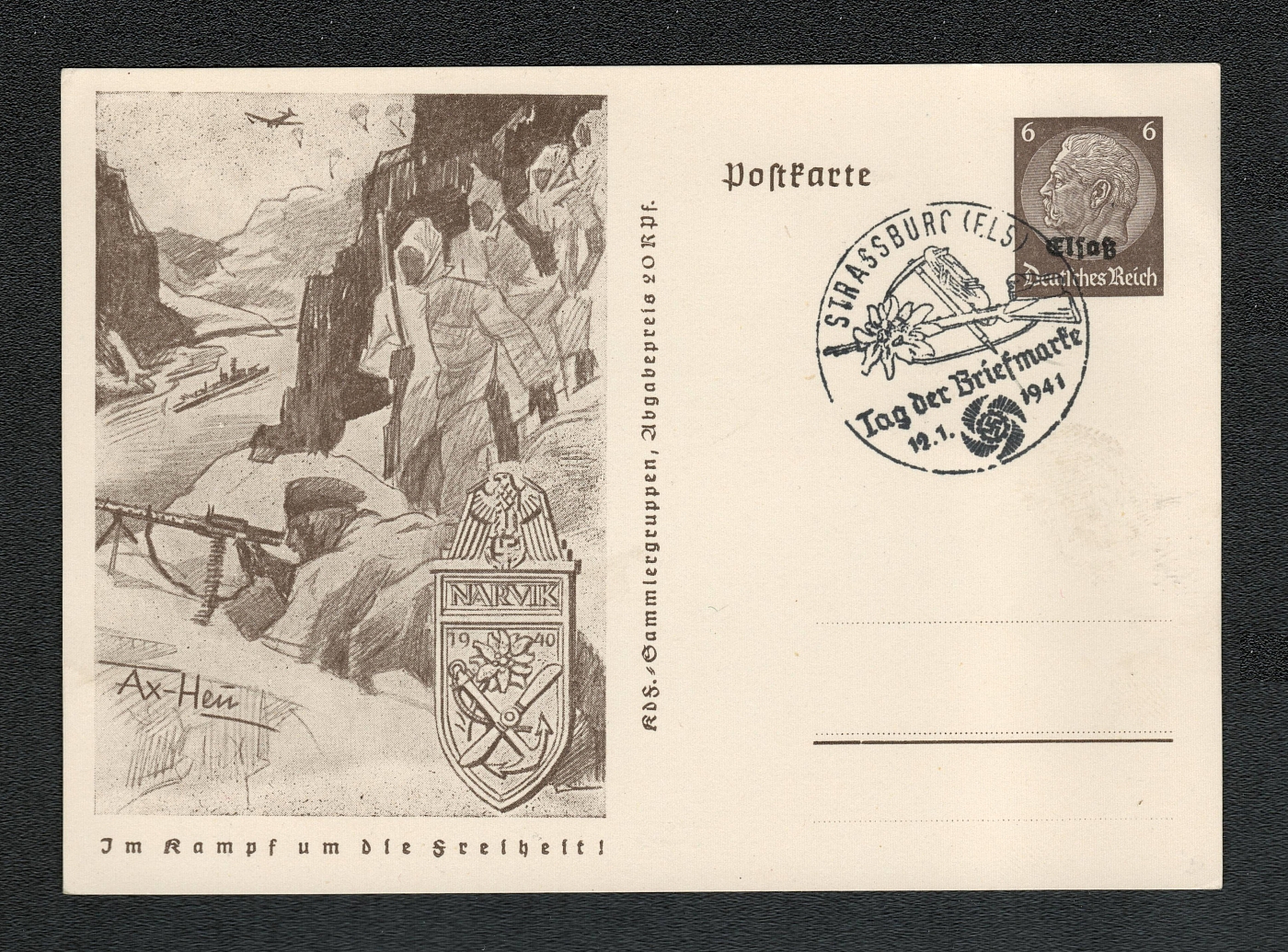
1941 NARVIK 1940, occupation of Alsace Special postmark Strassburg
1941 NARVIK 1940, occupation of Alsace Special postmark Strassburg
Sold for:
$10
Lot Number
Price
201
$10
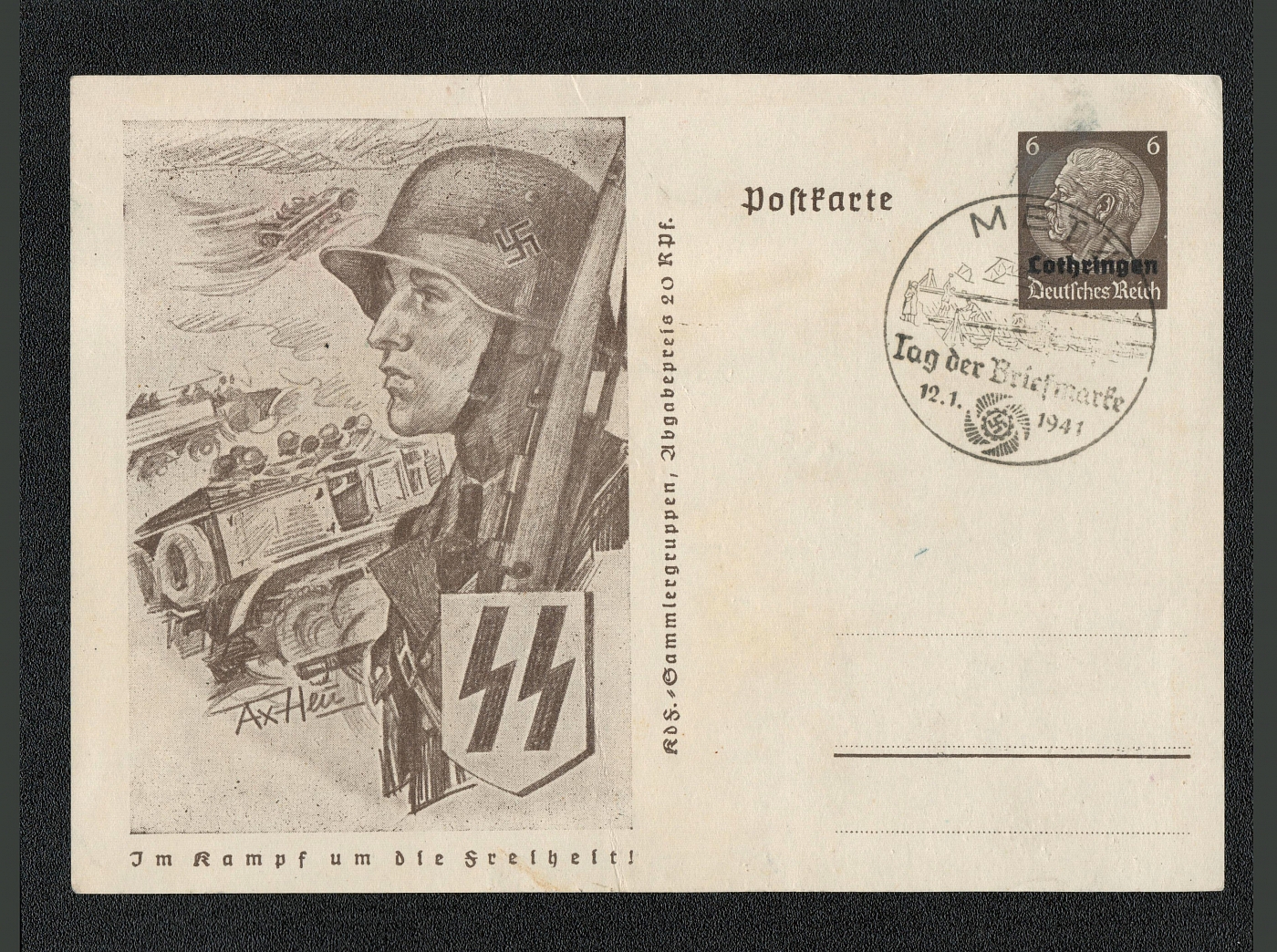
1941 Stormtrooper SS occupation of Lorraine Special postmark Metz
1941 Stormtrooper SS occupation of Lorraine Special postmark Metz
Sold for:
$10
202
-
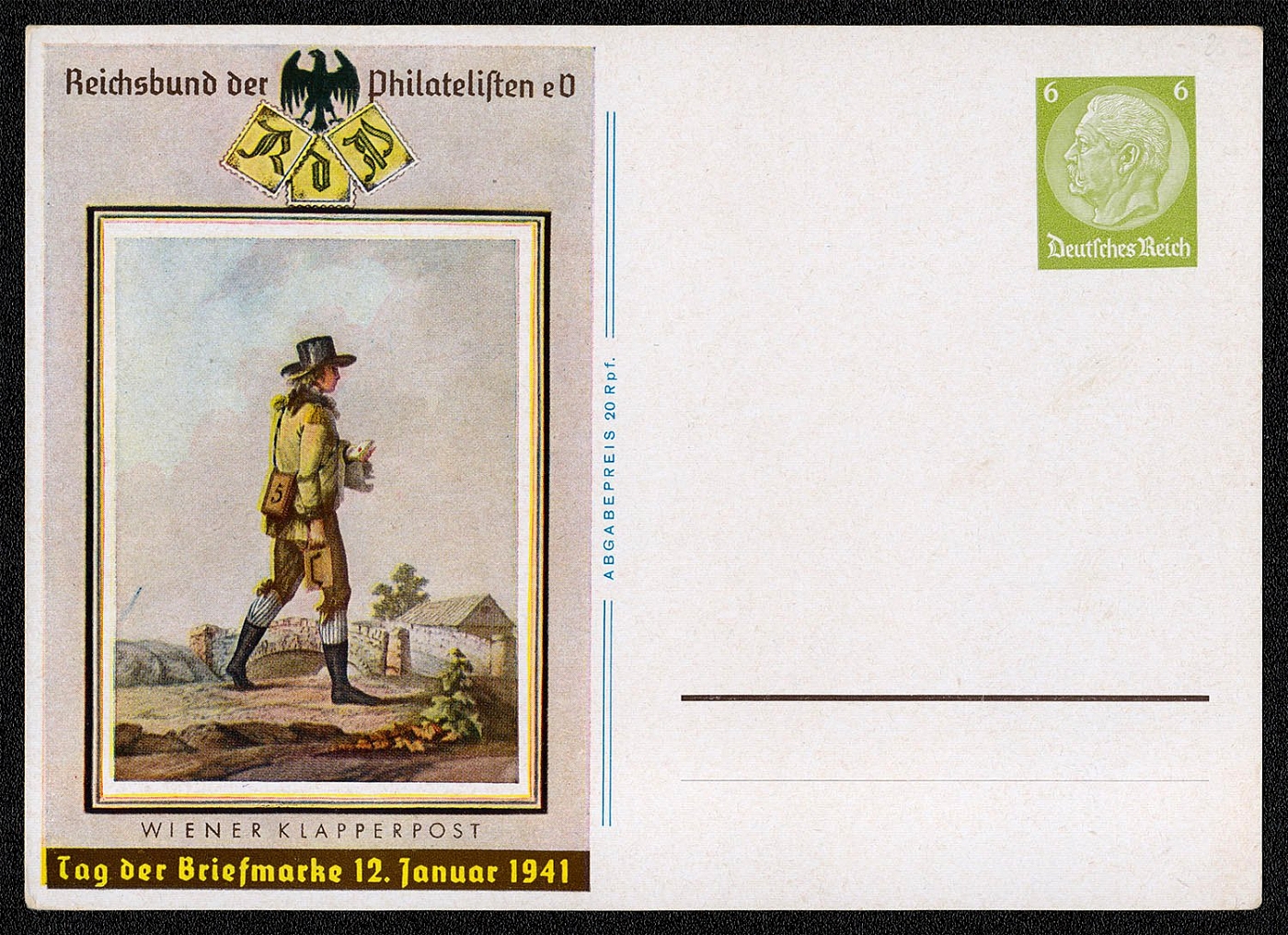
1941 Day of the Stamp Viennese Klapper Postman
One of several official post cards printed for the 1941 Day of the Stamp. It depicts an old-fashioned Viennese Klapper Postman, who sounded a rattle to announce his arrival at a particular delivery spot. The card was ordered by the KdF Reichsbund Philatelisten. The card sold for 20 Rpf, and the surcharge went toward its operating treasury.
Unsold
203
$55
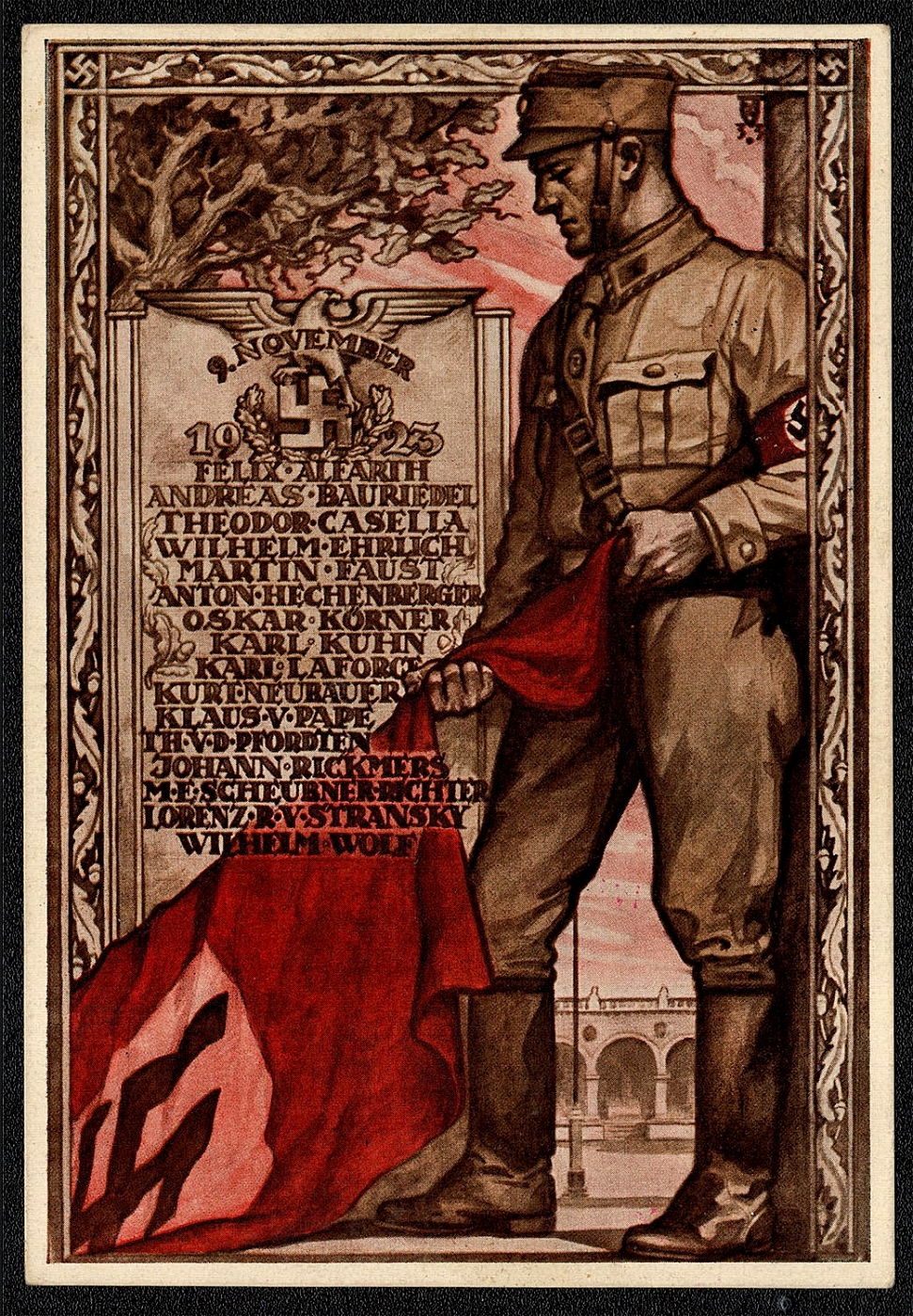
1941 SA man holding the Blutfahne before the Feldherrnhalle Mahnmal in Munich
This Hoffmann card depicts an SA man holding the Blutfahne before the Feldherrnhalle Mahnmal in Munich. The plaque names, and the 1939 handstamp on the reverse commemorates, the sixteen who fell on this historical date sixteen years earlier. The card was issued in 1935 and handstainped in 1939. It received a Tag der Briefmarke Gefalligkeitsstempel (favor cancellation) in Munich on 30 January 1941. The sword and clasped hands cancel was also used in Berlin and Wien.
Sold for:
$55
204
-
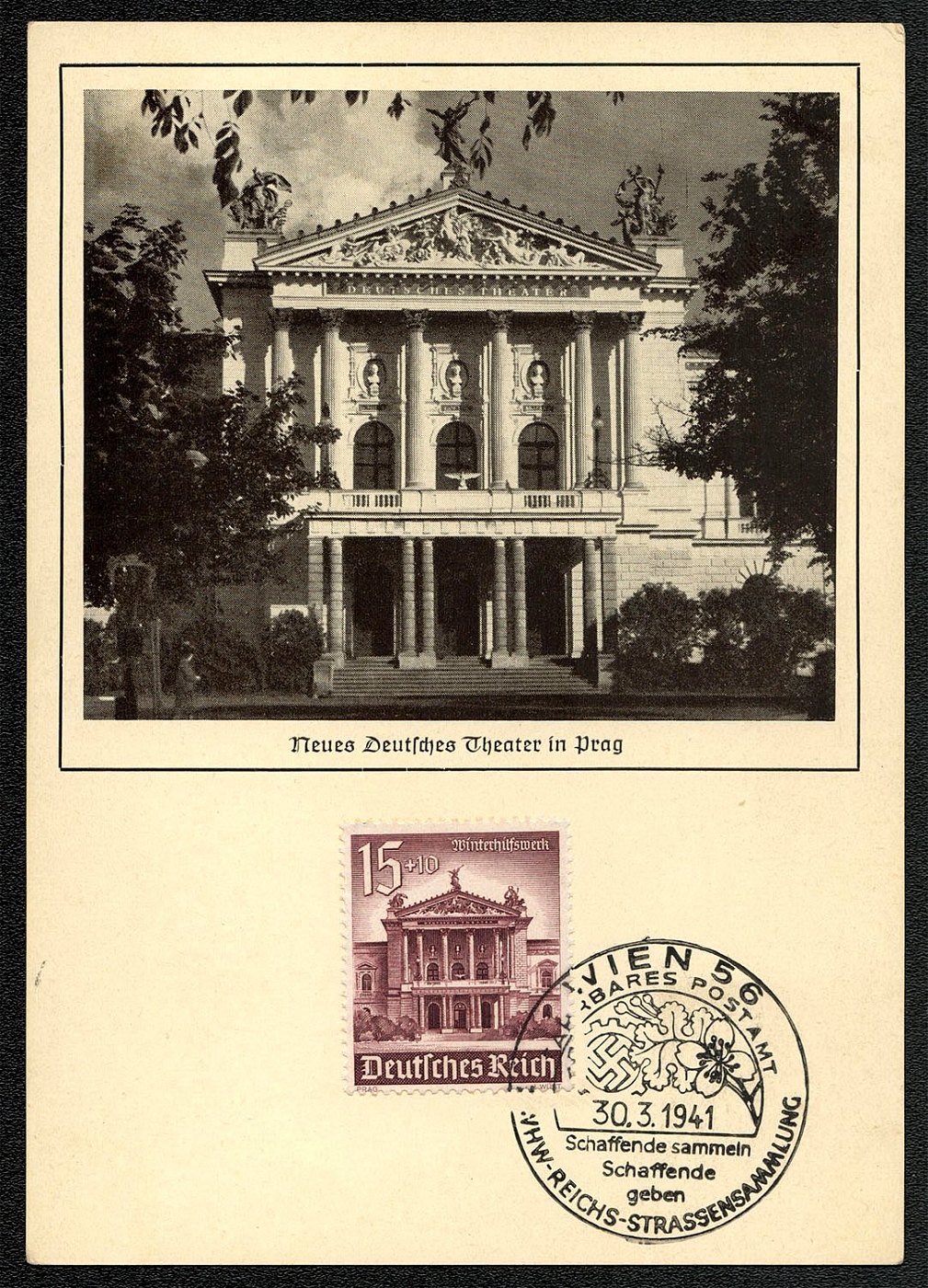
1941 Maximumcard “Collect Productively, Give Productively.”
1941 Maximumcard “Collect Productively, Give Productively.” Cancelled 30 March 1941 in the Wien 56 Mobile Post Office. The Sonderstempel publicizes the 7th Winter Relief Street Collection. Depicted is a rose hip branch with the slogan “Collect Productively, Give Productively.”
Unsold
205
-
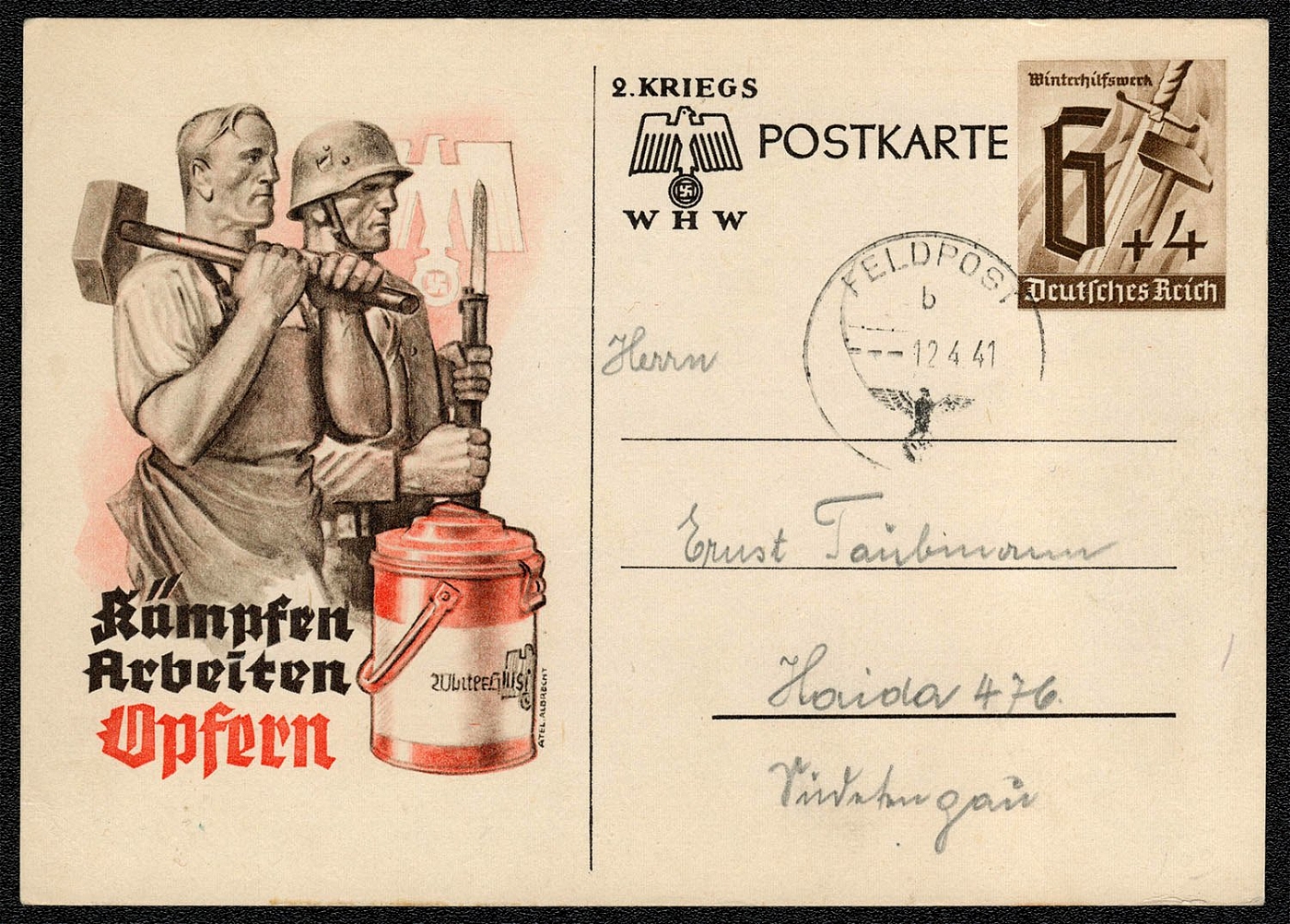
1941 Special Postcard for the 1940 Winter Aid
Michel P 291 issued 1940. This postal card was designed by Atelier Albrecht, and was printed on three types of cardstock: white, cream (above), and chamois. Depicted is a worker and soldier with a street collection can in the foreground. The inscription translates Fight/Work/Sacrifice. The hammer and sword imprinted stamp was designed by Lothar Wust. Posted on 12 April 1941 through the Feldpost
Unsold
206
$50
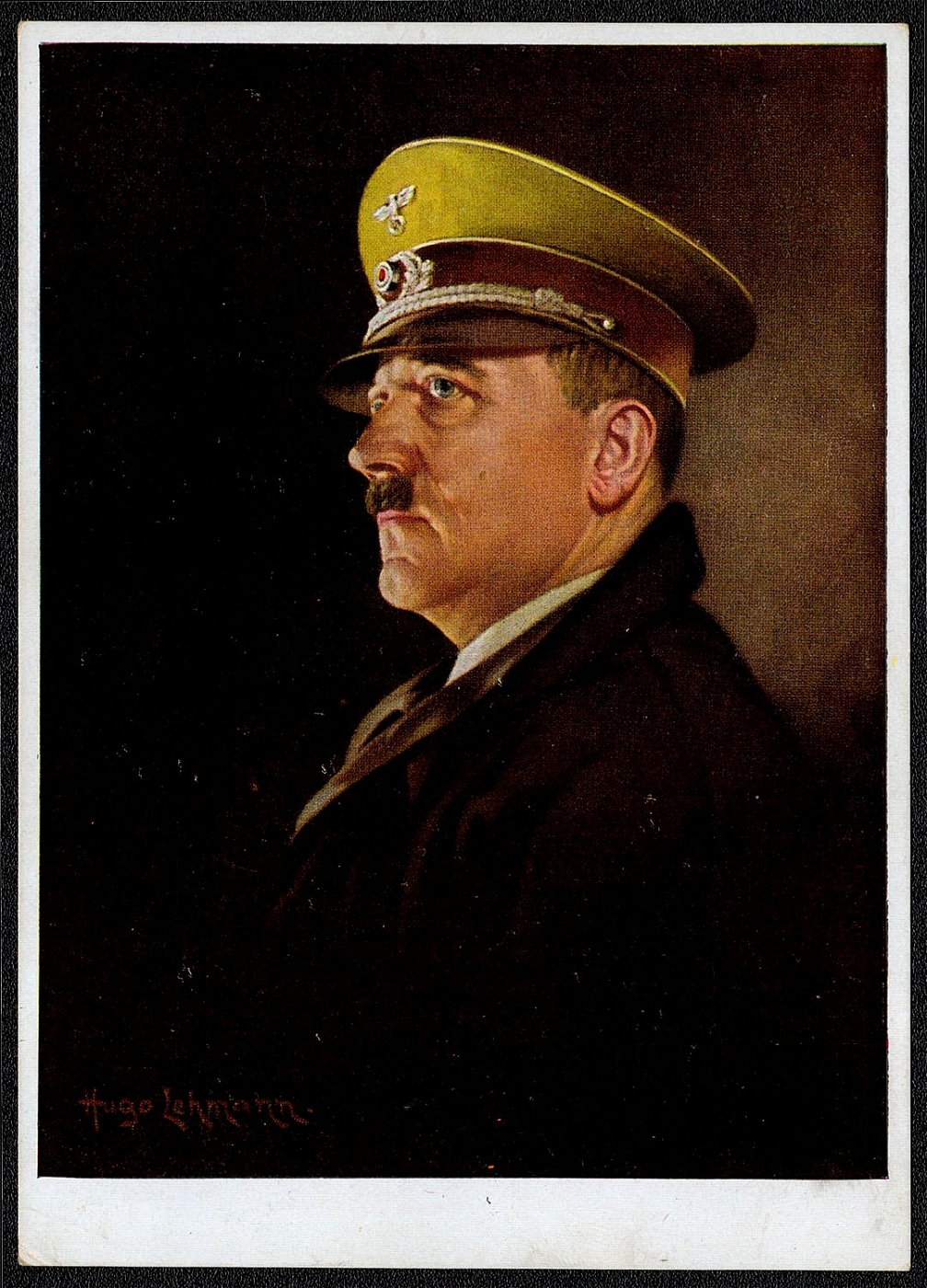
1941 The Führer and Reich Chancellor Adolf Hitler
"1941 The Führer and Reich Chancellor, Adolf Hitler Scott No. В190 tied to propaganda postal card with cancellation commemorating Hitler’s 52'""' Birthday. Published by Heinrich Hoffmann of Munich, Hitler’s personal photographer. Posted in Vienna, 20 April 1941."
Sold for:
$50
207
$16
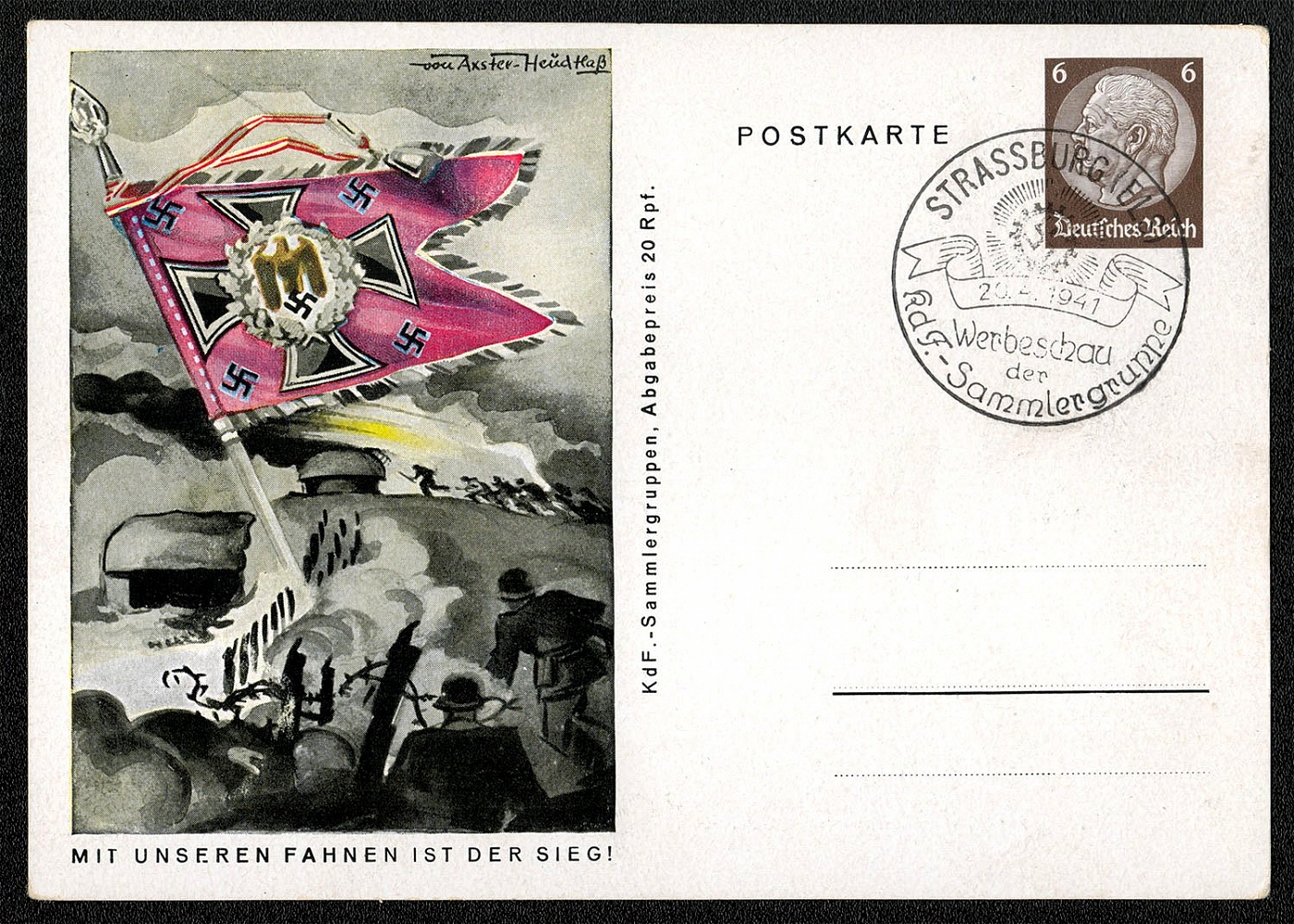
1941 The Victory Is With Our Flags Smoke Screening Unit
"Michel P243/05 cancelled to order 20 April 1941, the first day of issue, in Strassburg (Els). This card is one of the commemorative set „Mit unseren Fahnen ist der Sieg!“ (The Victory Is With Our Flags) issued for Hitler’s 52""d Birthday. The special cancellation reflects the publicity show sponsored by the KdF Stamp Collectors Club. The ancient city of Strassburg (Strasbourg in French) was originally a Celtic village, then a Roman garrison town called Argentoratum. In the Franco-German War (1870-71) the Germans captured the city after a 50-day siege and annexed it. Strassburg reverted to France after World War 1. It was occupied by Germany again in June 1940 and remained under German control until November 1944."
Sold for:
$16
208
$25
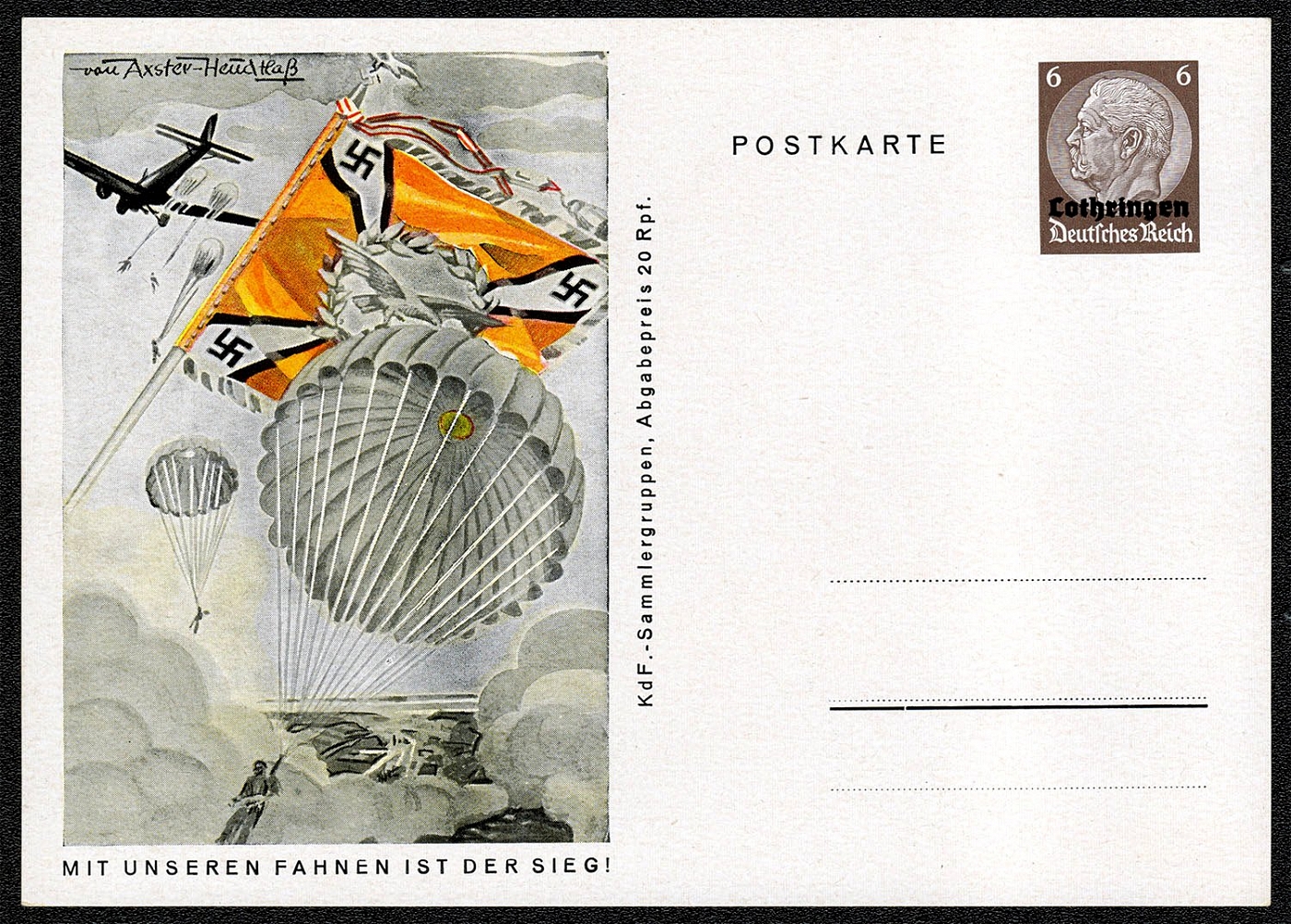
1941 The Victory Is With Our Flags Paratroopers
1941 The Victory Is With Our Flags Paratroopers
Sold for:
$25
209
$30
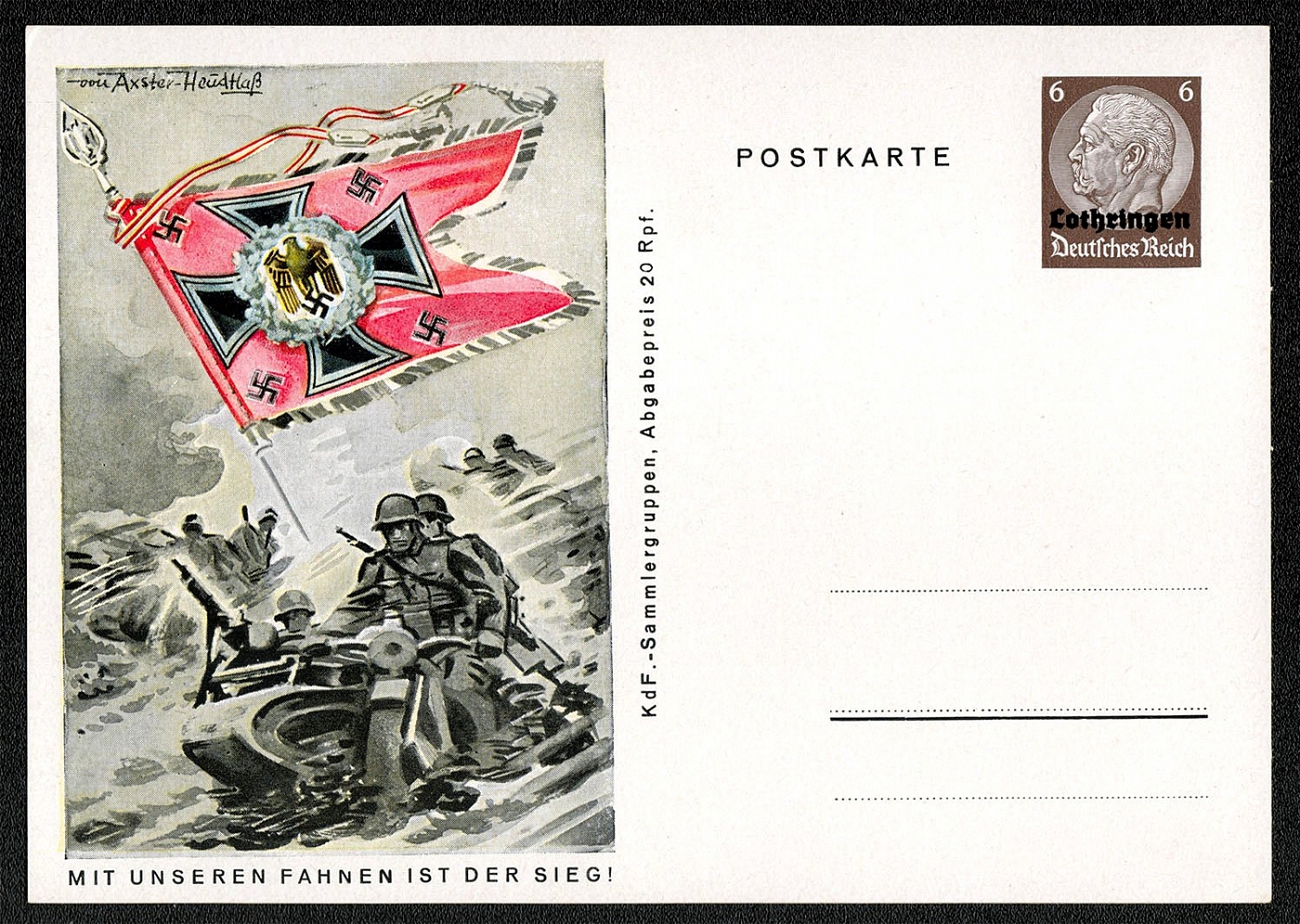
1941 The Victory Is With Our Flags Motorcycle Troopers
1941 The Victory Is With Our Flags Motorcycle Troopers
Sold for:
$30
210
$25
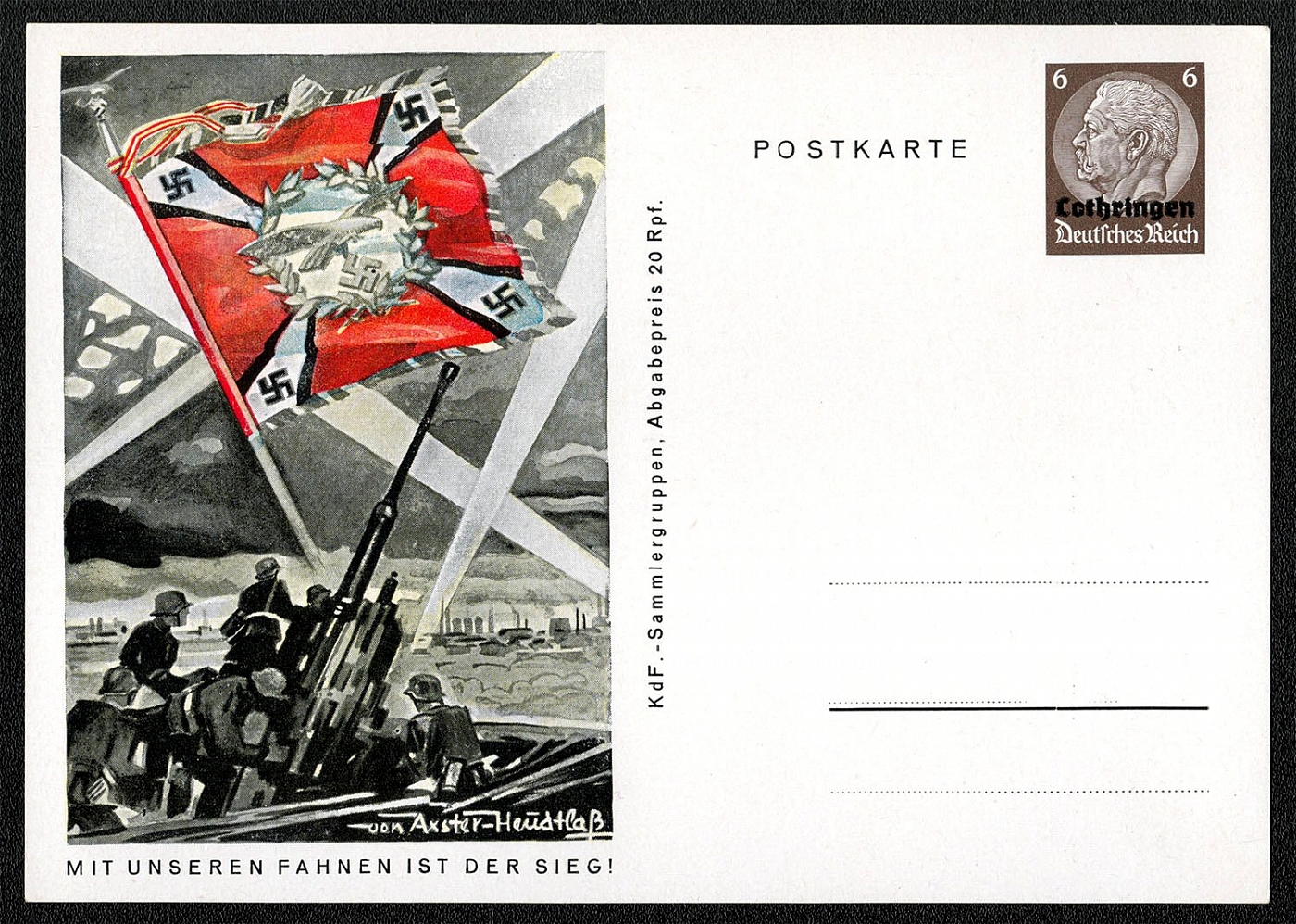
1941 The Victory Is With Our Flags Antiaircraft Gunners
1941 The Victory Is With Our Flags Antiaircraft Gunners
Sold for:
$25
211
$30
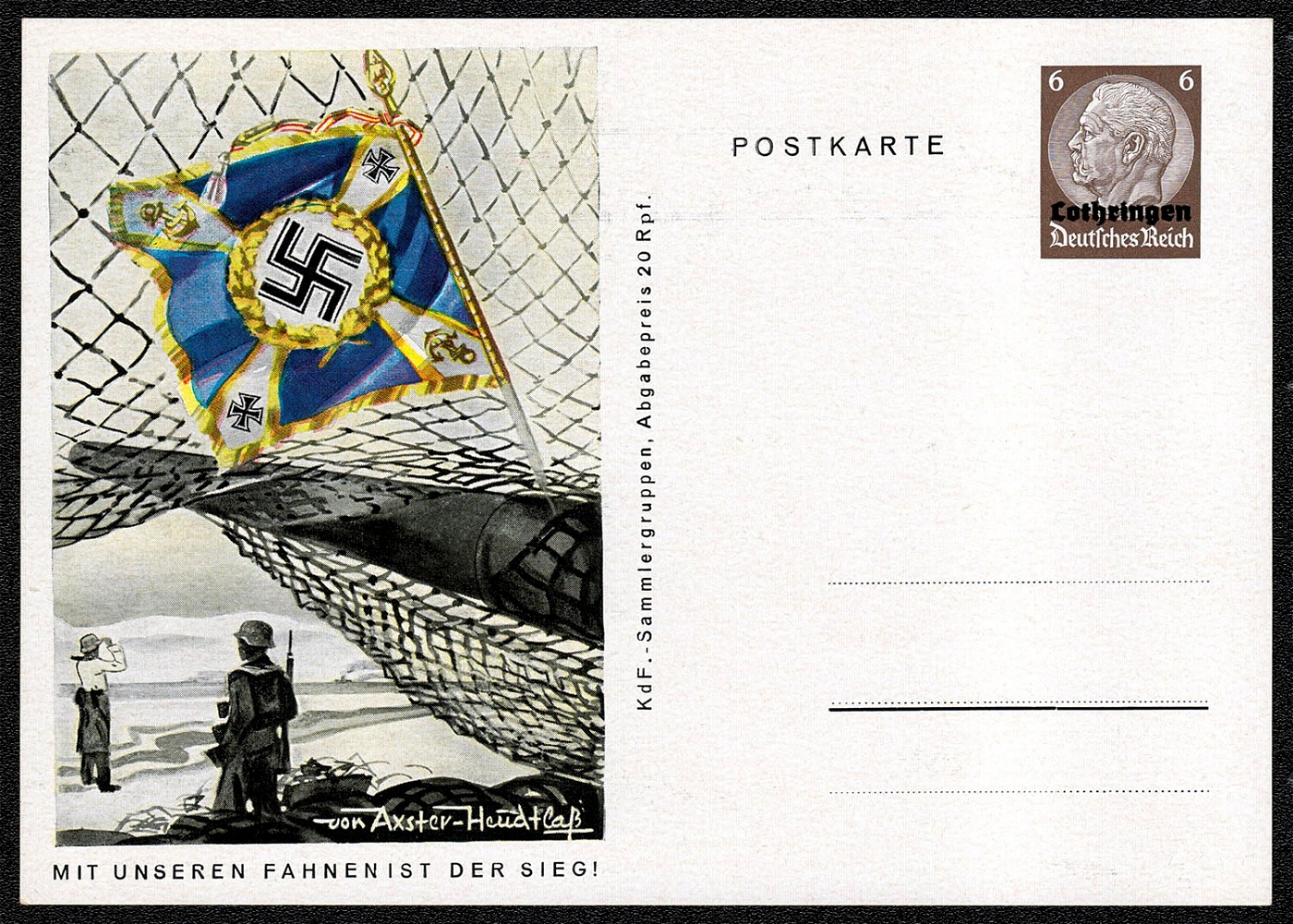
1941 The Victory Is With Our Flags Navy artillery under camouflage
1941 The Victory Is With Our Flags Navy artillery under camouflage
Sold for:
$30
212
$25
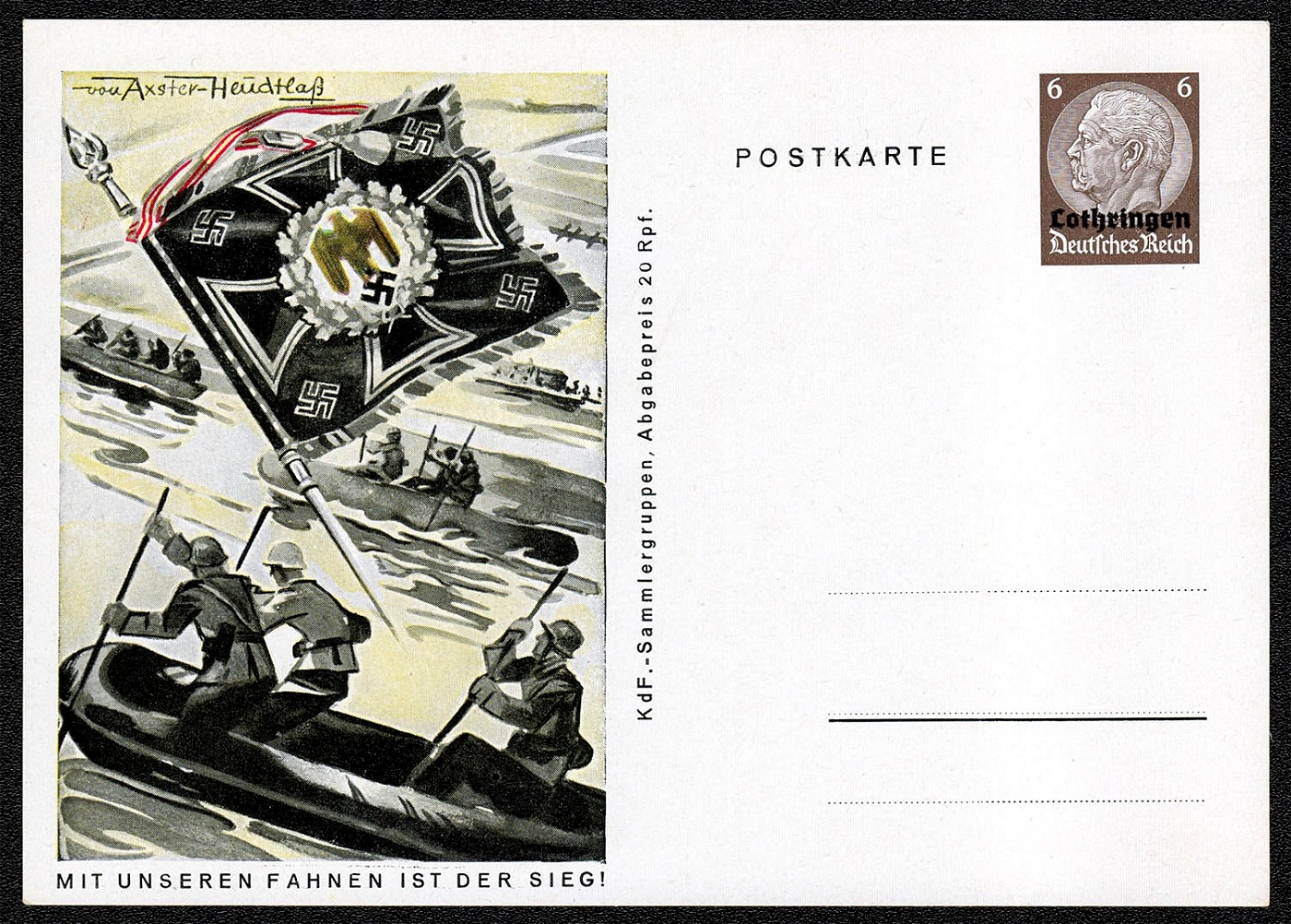
1941 The Victory Is With Our Flags Engineers in inflatable boats
1941 The Victory Is With Our Flags Engineers in inflatable boats
Sold for:
$25
213
$30
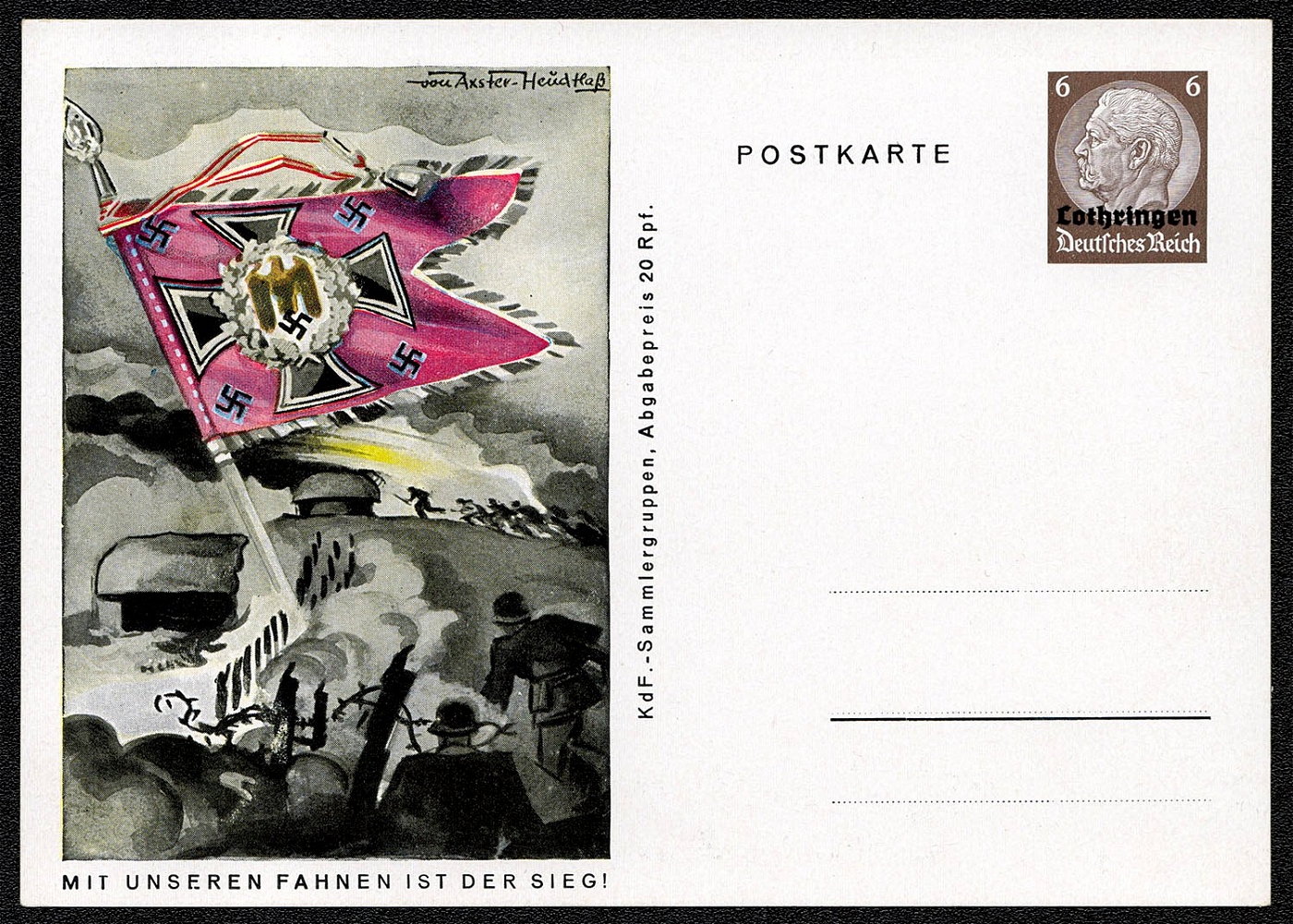
1941 The Victory Is With Our Flags Smoke Screening Unit
1941 The Victory Is With Our Flags Smoke Screening Unit
Sold for:
$30
214
$25
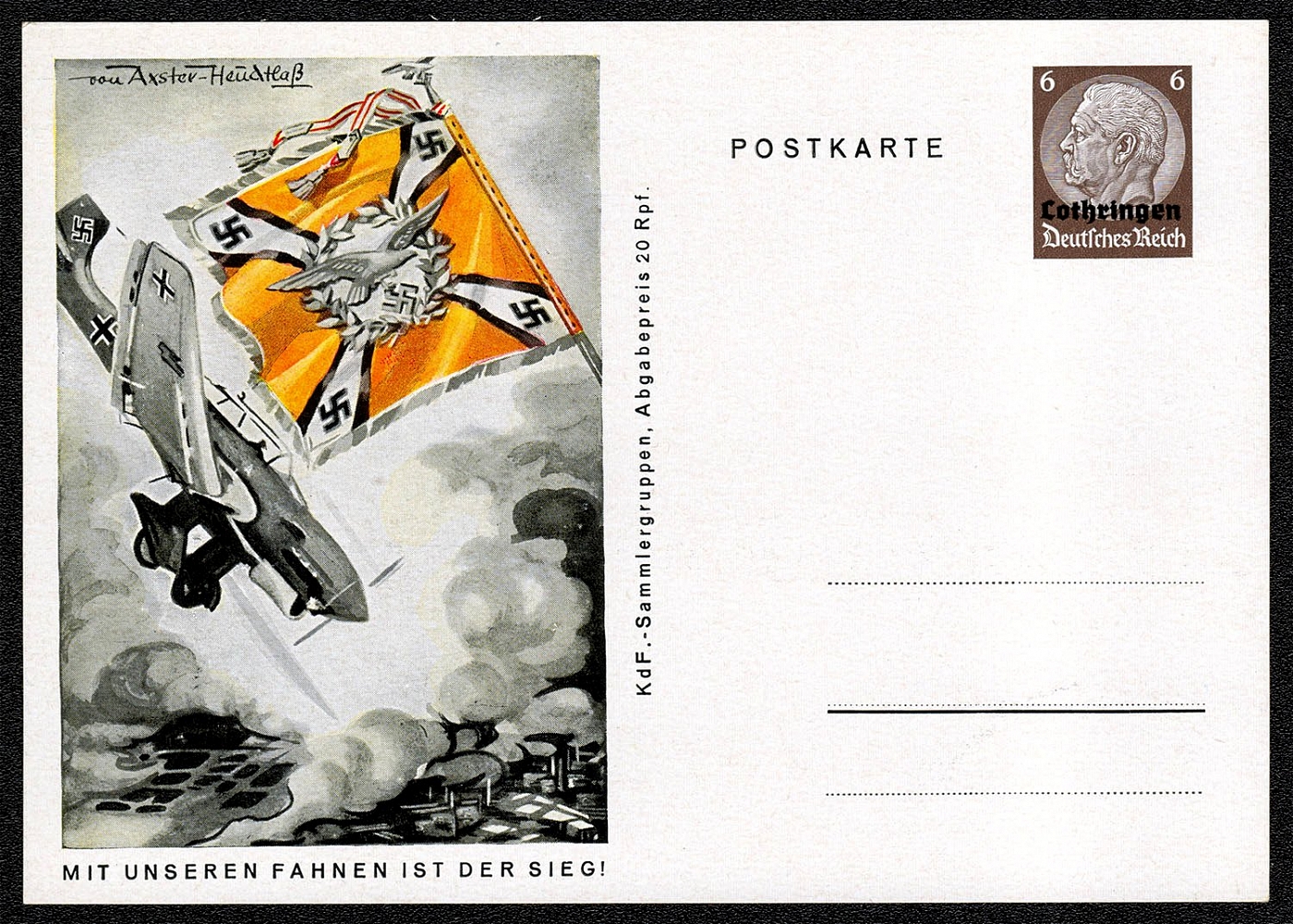
1941 The Victory Is With Our Flags Air forces
1941 The Victory Is With Our Flags Air forces
Sold for:
$25
215
$30
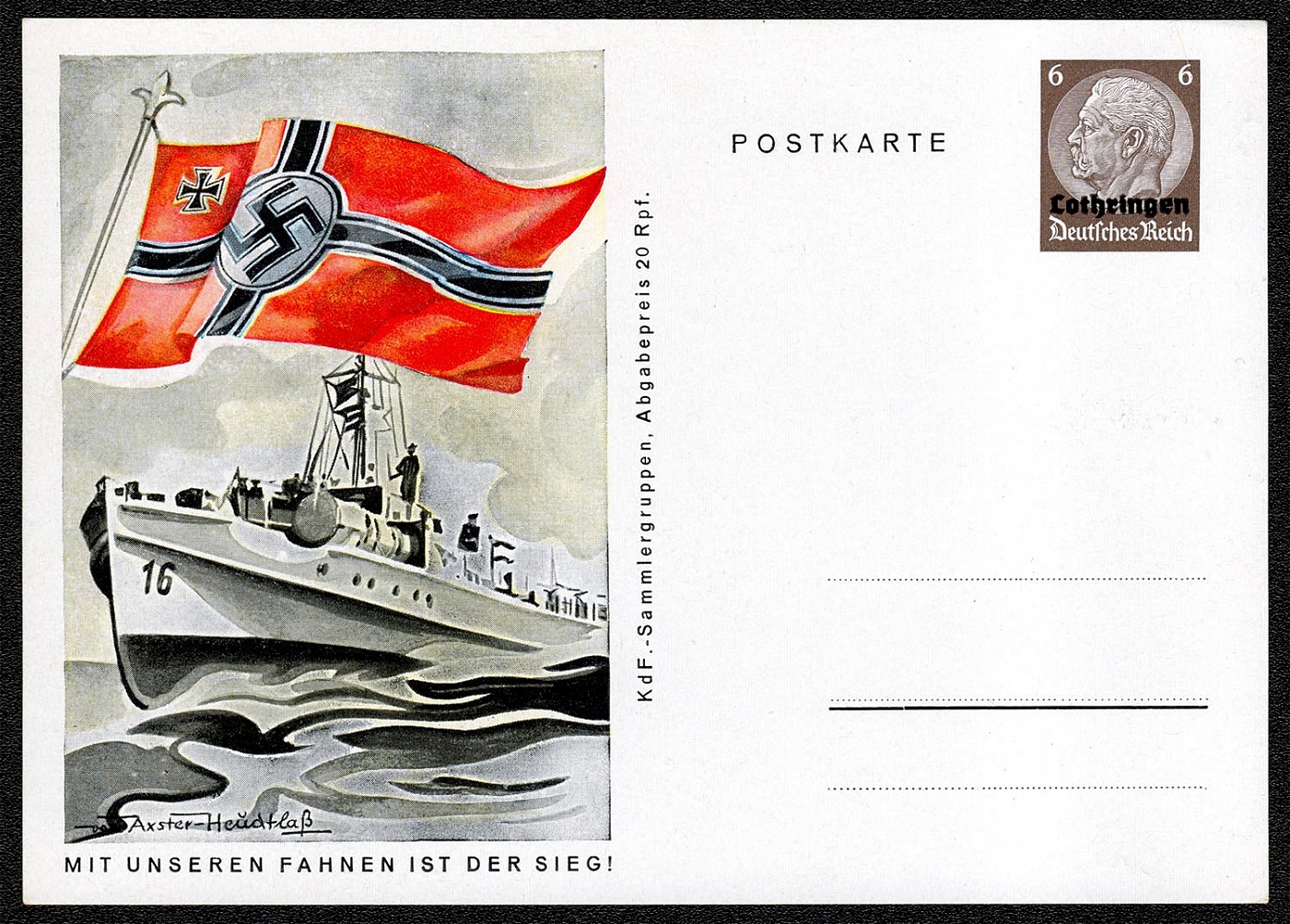
216
-
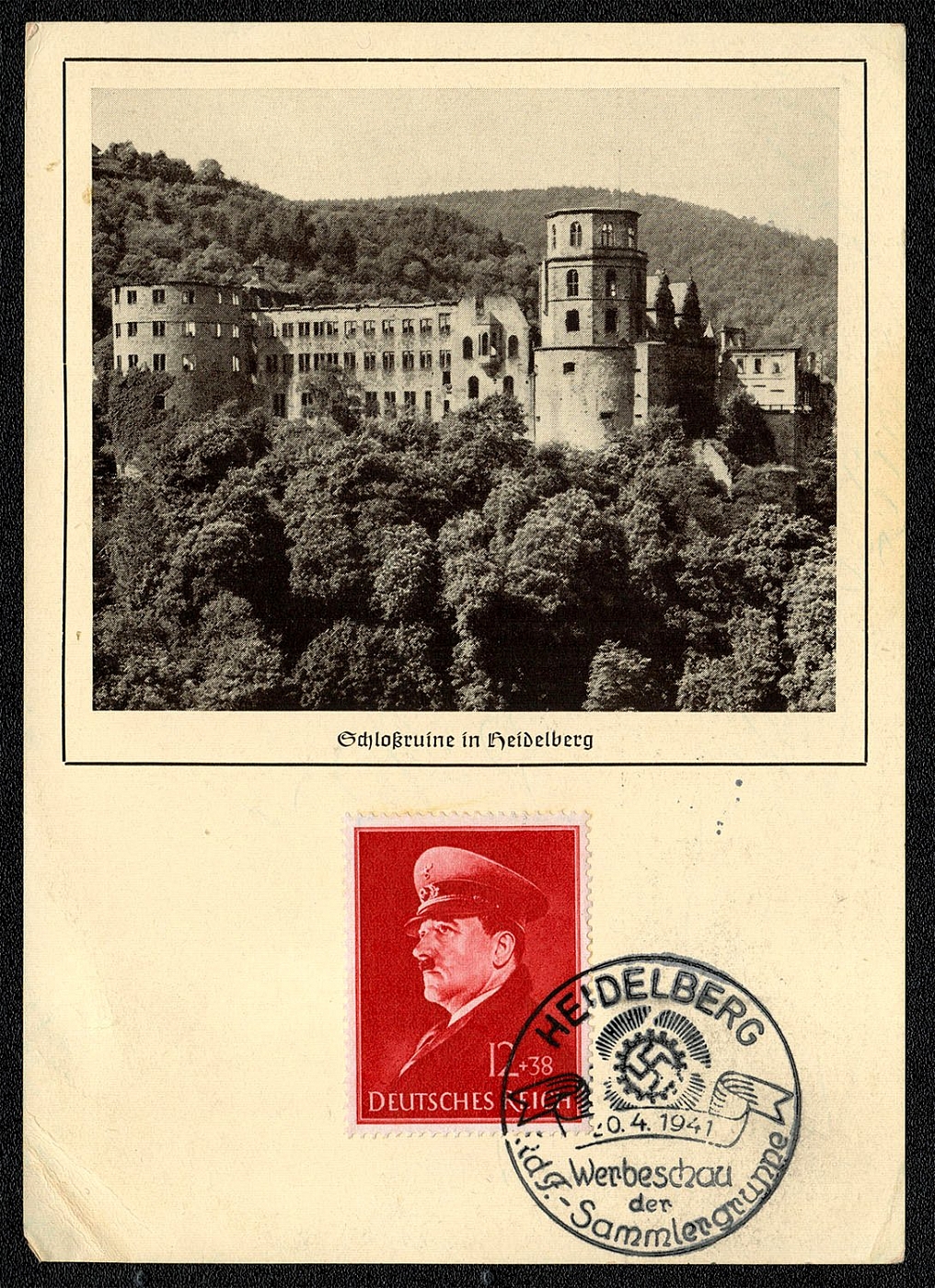
1941Philatelic Club Photo Card Collectors Club of Heidelberg
The most interesting and imposing building in the city of Heidelberg is the castle. Although devastated by the French in 1689 and 1693 and then struck by lightening in 1764, this magnificent red sandstone structure, 330 feet about the river, still dominates the city. Construction began in the 13,h century, but the most notable work was done in the Renaissance period and includes the Otto-Heinrichsbau and the Friedrichsbau wings. In the cellar of the latter is the Heidelberg Tun (1751), an enormous wine cask with a capacity of 49,000 gallons. The castle can be reached fr om the lower city by a cable railway, which continues to the summit of the Konigsstuhl (massif). A publicity show was sponsored on 20 April 1941 (Hitler’s 52nd birthday) by the KdF Stamp Collectors Club of Heidelberg wh ere the special postmark was used.
Unsold
217
-
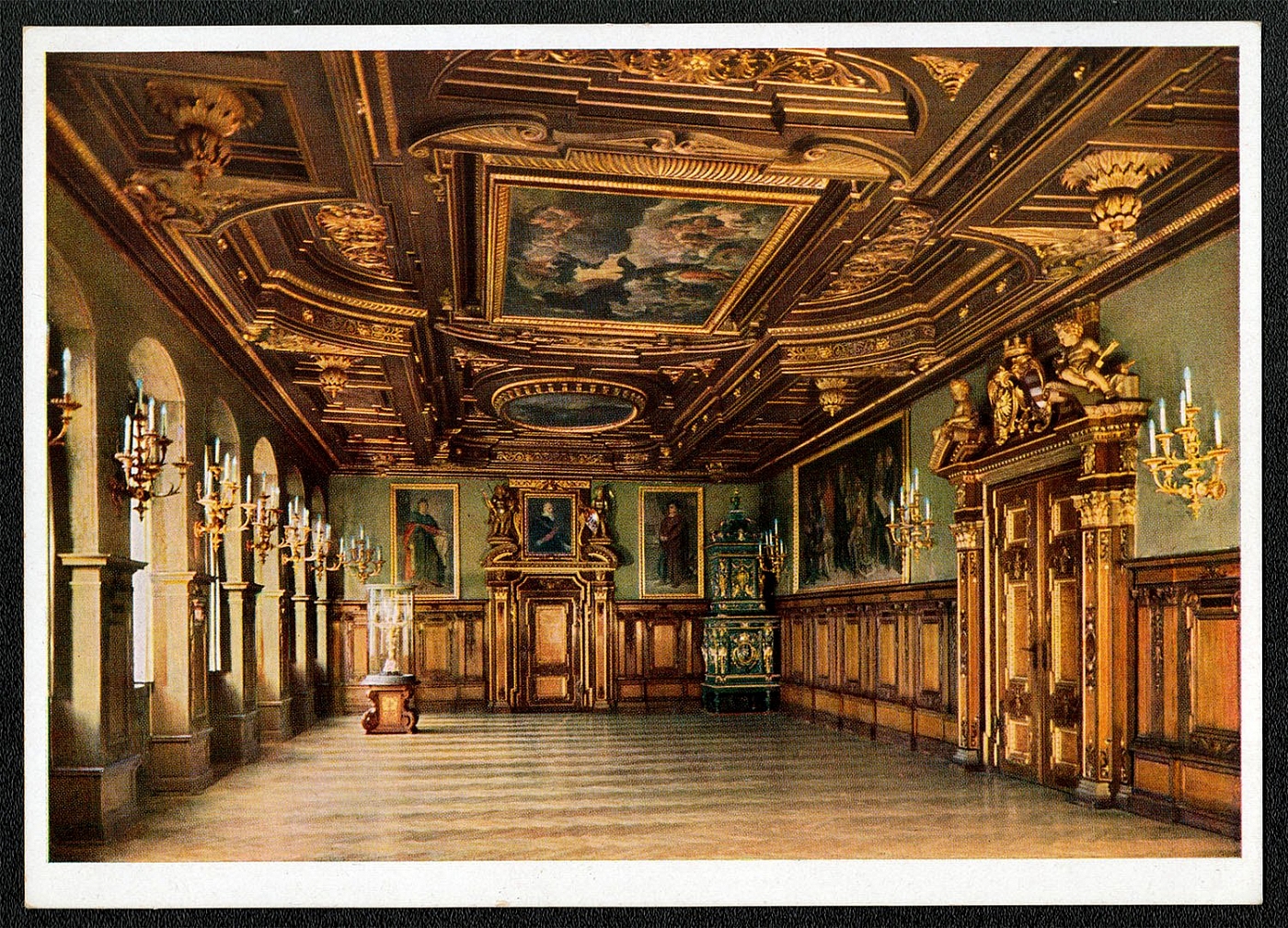
1941 Nurnberg The splendid hall in Wolffscheb
City Hall Nurnberg, the City of the National Party Rallies The splendid hall in Wolffscheb. Built in 1620 Restored in 1889-90 Preiss & Co., Munich Publisher for City of the National Party Rallies of Nurnberg § The Rathans was originally a Gothic edifice. The chief attraction of the interior is the Grosser Saal (Great Hall), 130 feet long and 35 feet broad with an arched timber roof. On the ceiling of the corridor on the second floor (pictured on the post card) is a large stucco relief representing a tournament held at Niirnberg in 1446.
Unsold
218
$55
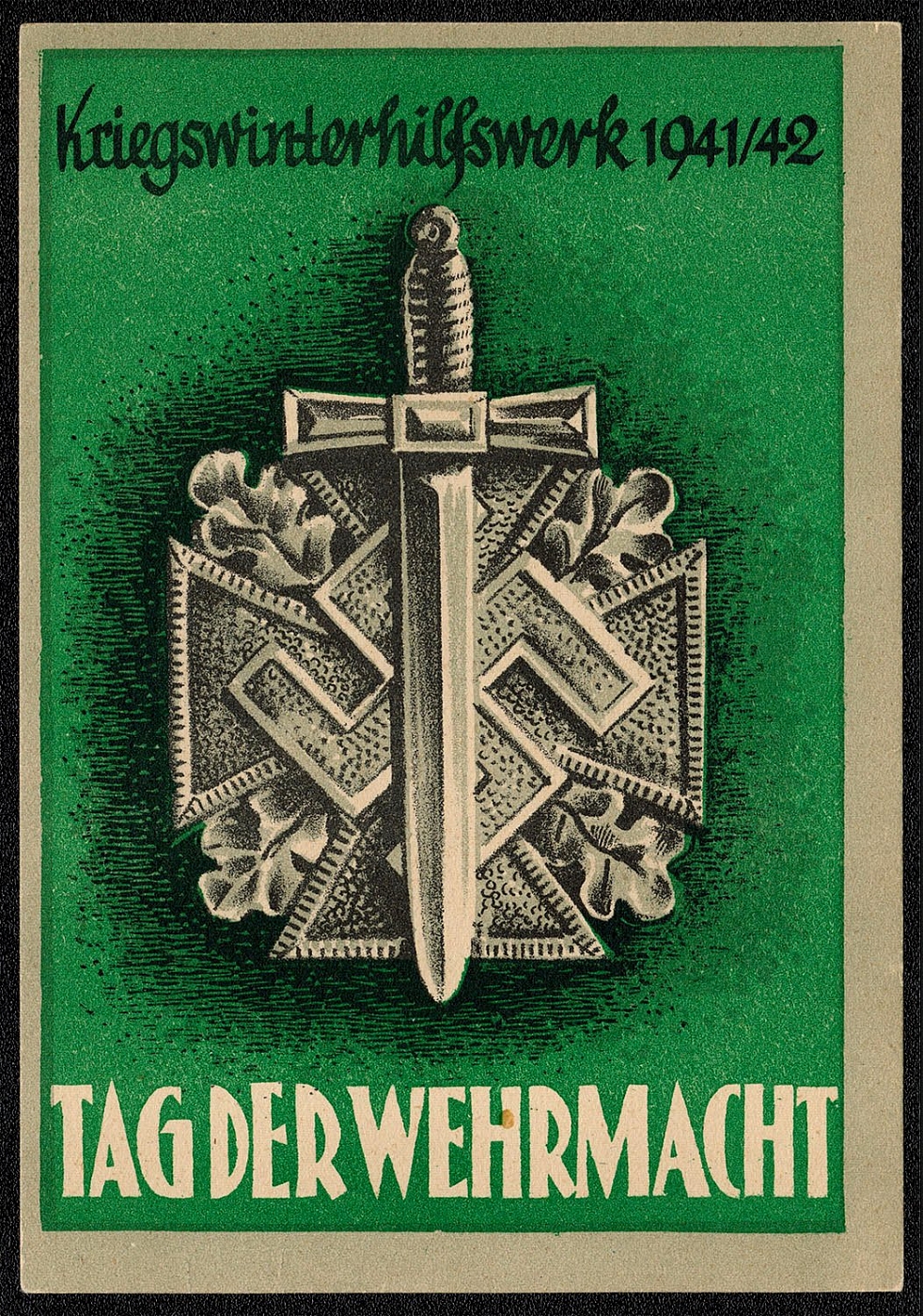
1941 Winter Relief of the German People Day of the Wehrmacht
1941 Winter Relief of the German People Day of the Wehrmacht
Sold for:
$55
219
$25
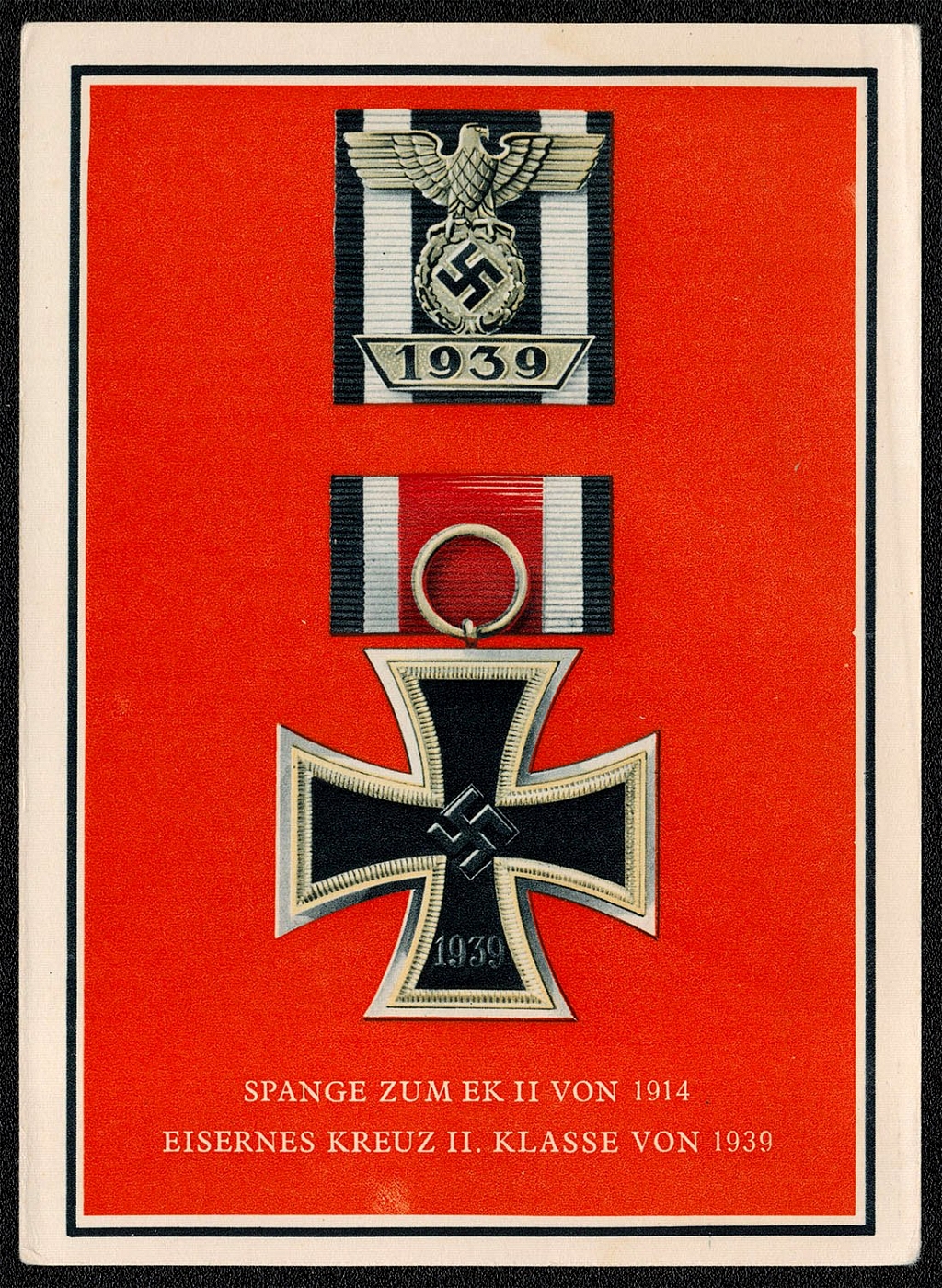
1941 War Medals of the Greater German Reich Iron Cross
1941 War Medals of the Greater German Reich Iron Cross
Sold for:
$25
220
-
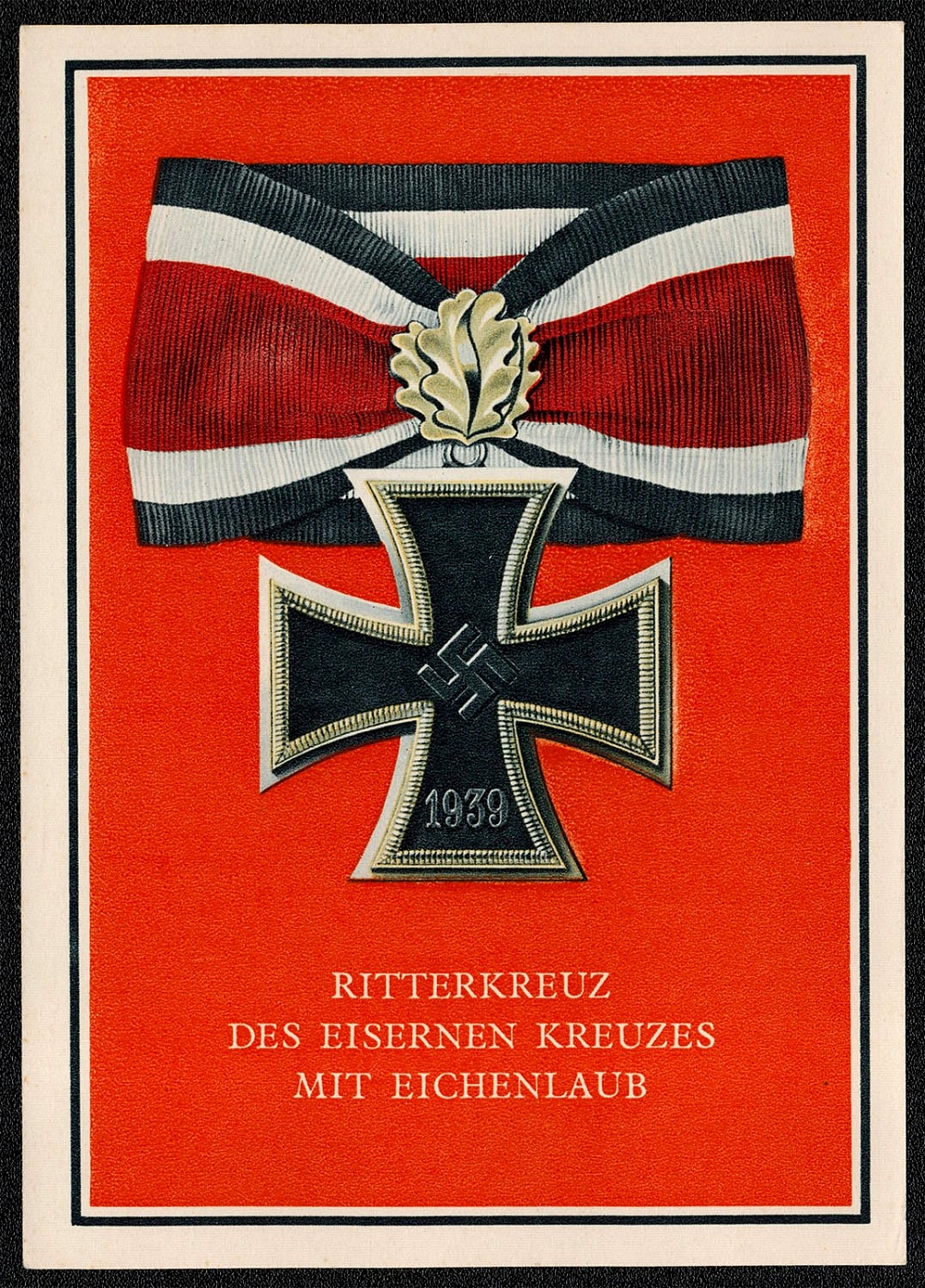
1941 War Medals of the Greater German Reich Iron Cross with Oak Leaves
1941 War Medals of the Greater German Reich Iron Cross with Oak Leaves
Unsold
221
-
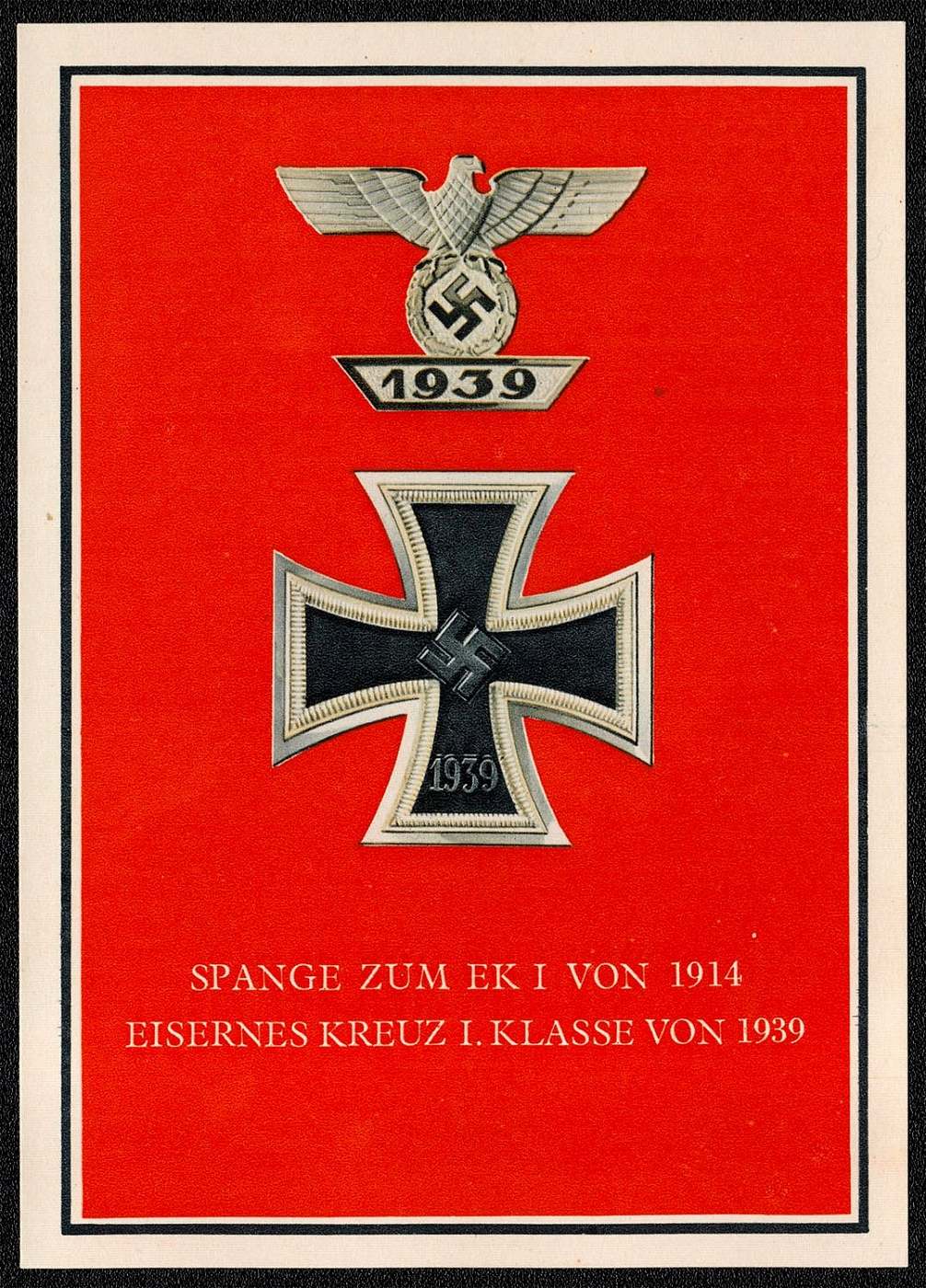
1941 War Medals of the Greater German Reich Iron Cross First Class
1941 War Medals of the Greater German Reich Iron Cross First Class
Unsold
222
$25
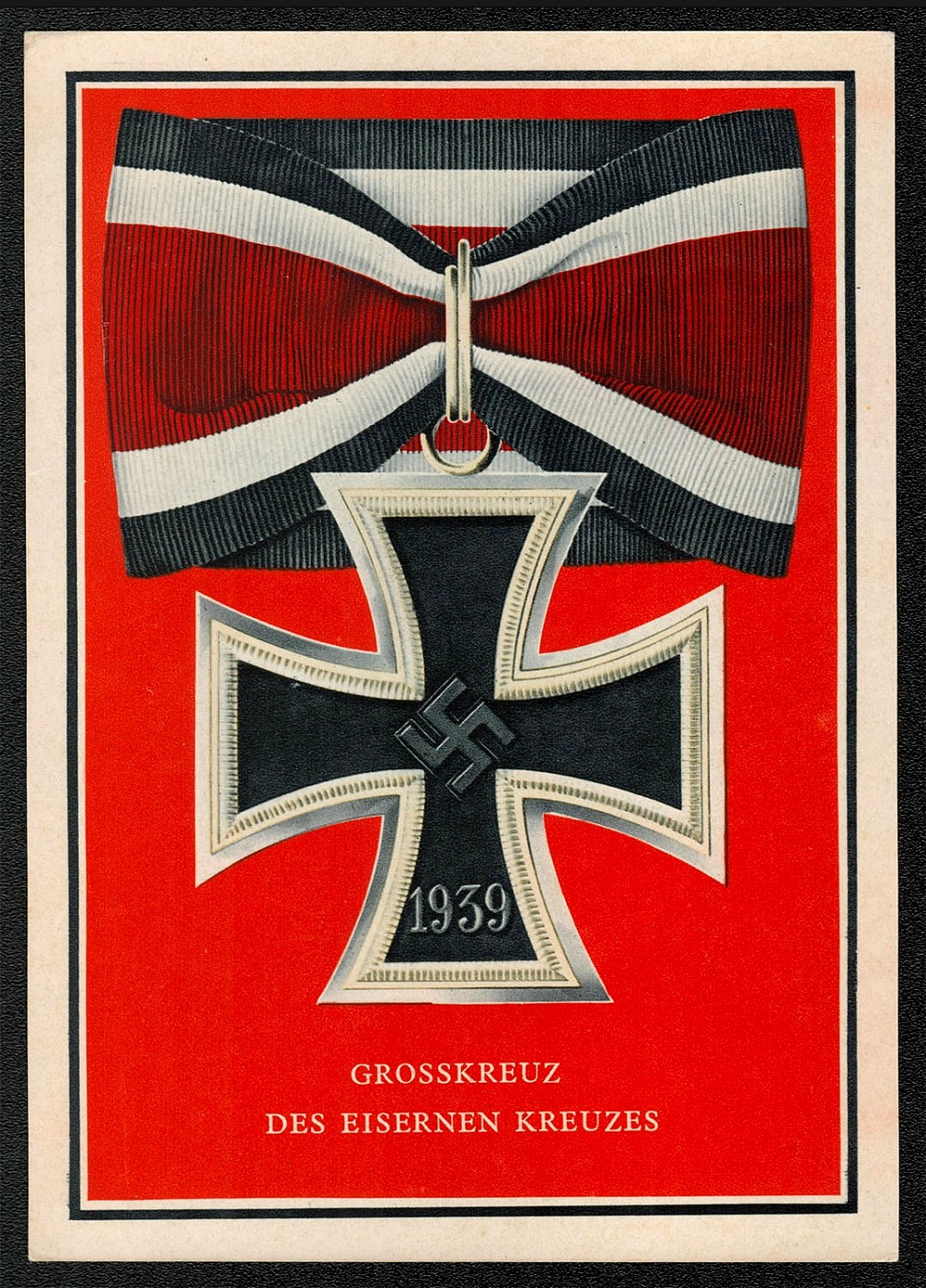
1941 War Medals of the Greater German Reich The Great Cross of the Iron Crosses
1941 War Medals of the Greater German Reich The Great Cross of the Iron Crosses
Sold for:
$25
223
$25
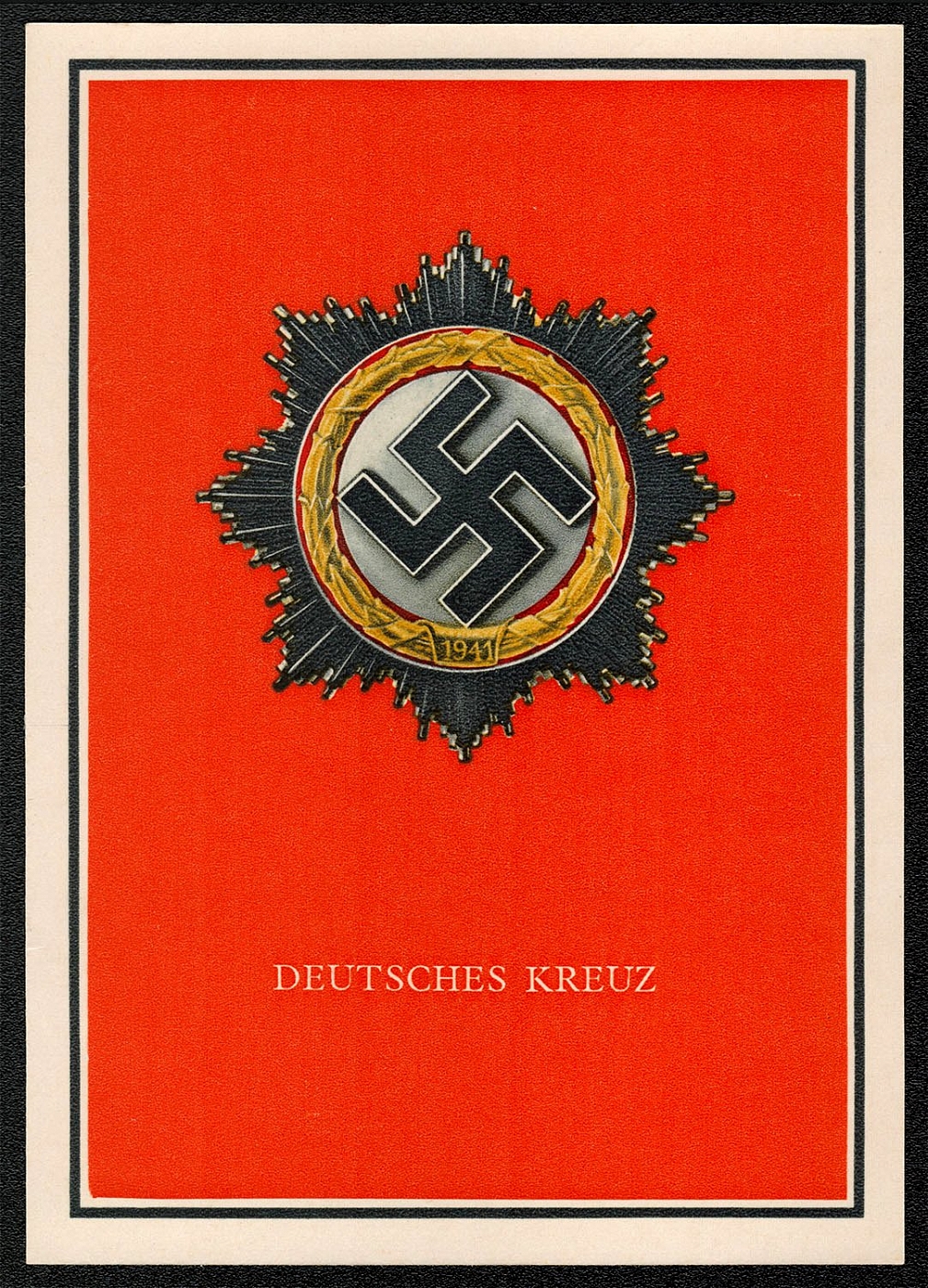
1941 War Medals of the Greater German Reich The German Cross
1941 War Medals of the Greater German Reich The German Cross
Sold for:
$25
224
-
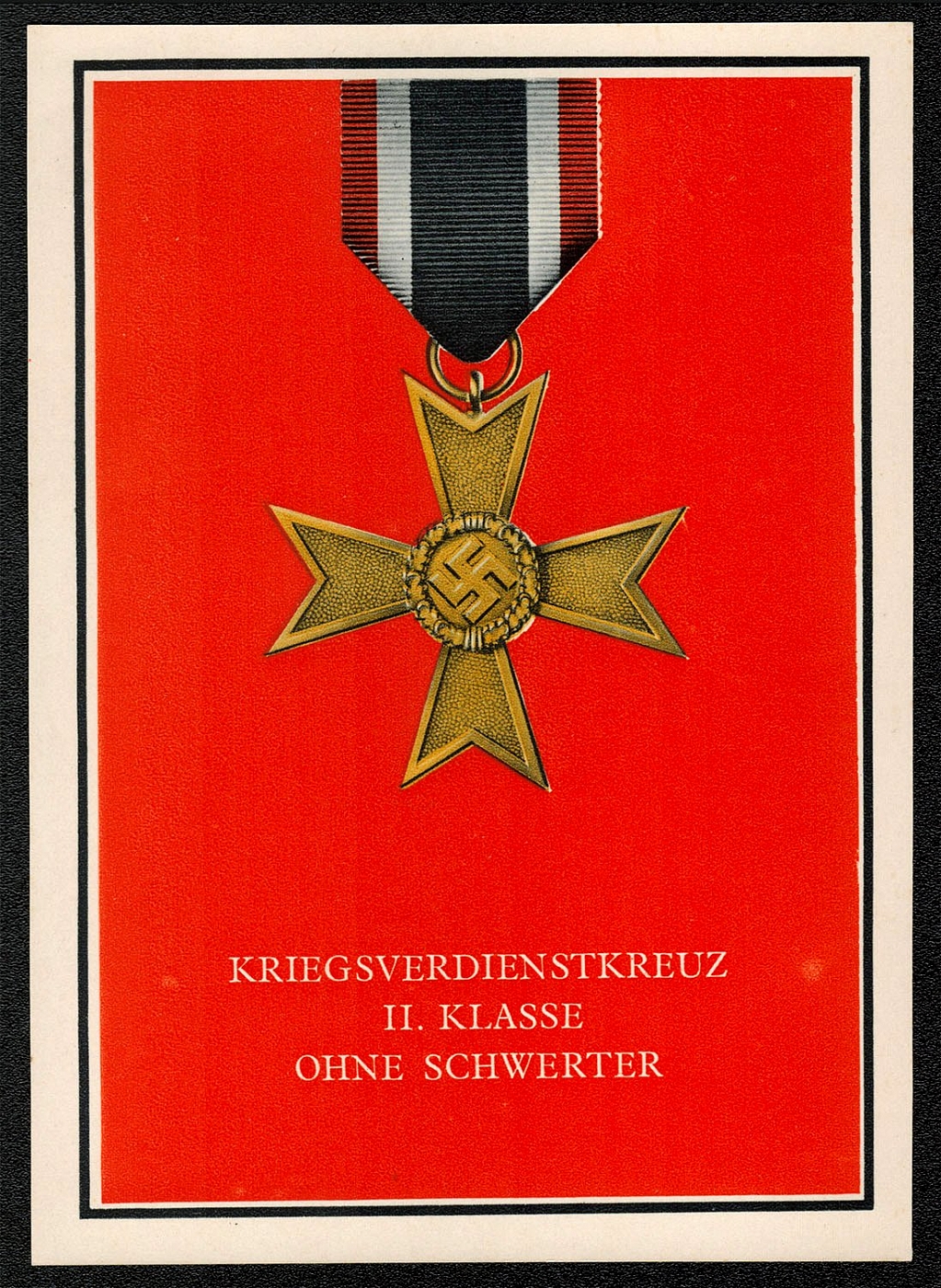
1941 War Medals of the Greater German Reich War Merit Cross Second Class Without Swords
1941 War Medals of the Greater German Reich War Merit Cross Second Class Without Swords
Unsold
225
-
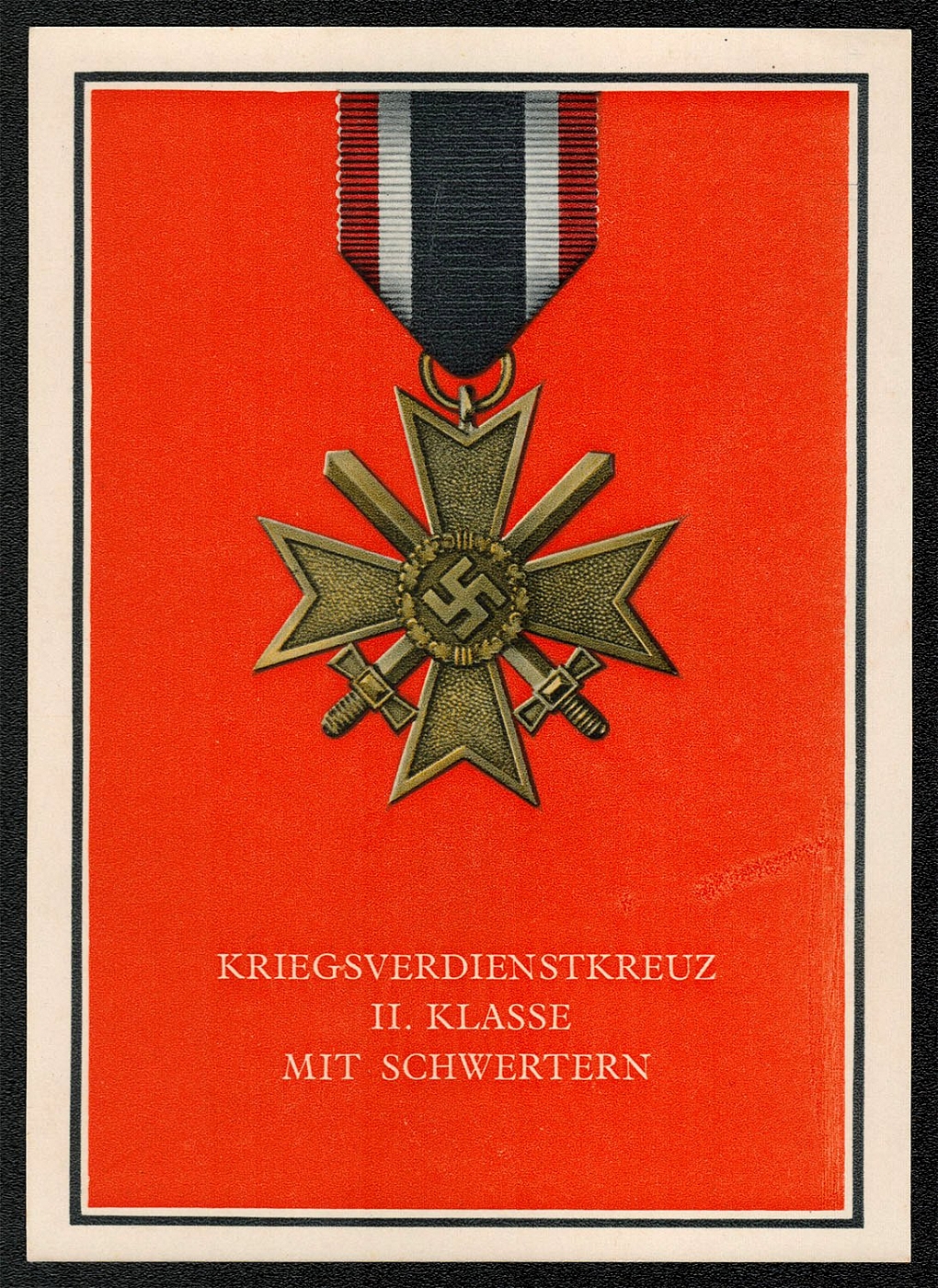
1941 War Medals of the Greater German Reich War Merit Cross Second Class With Swords
1941 War Medals of the Greater German Reich War Merit Cross Second Class With Swords
Unsold
226
-
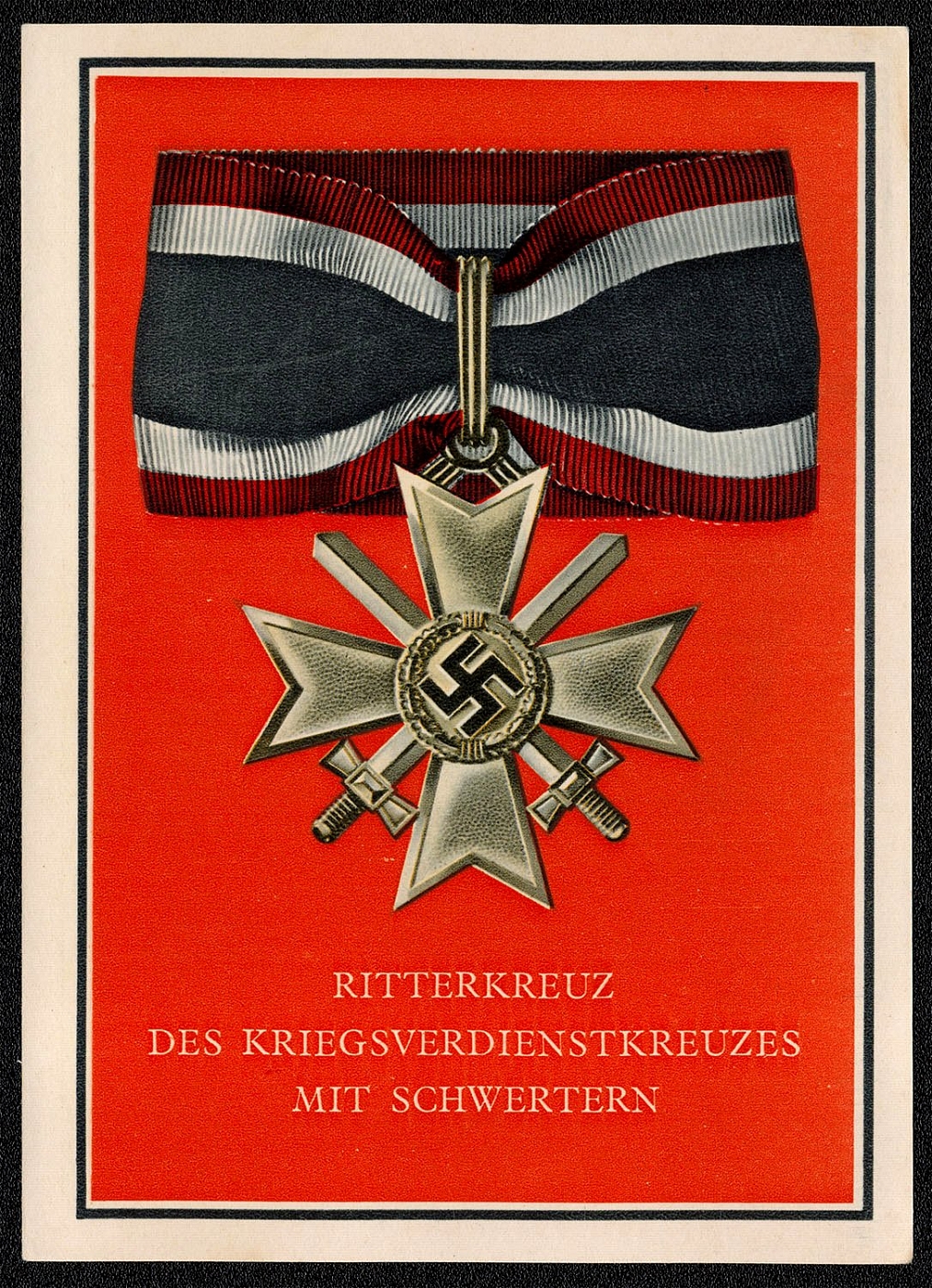
1941 War Medals of the Greater German Reich Knights Cross of the War Merit Cross with Swords
1941 War Medals of the Greater German Reich Knights Cross of the War Merit Cross with Swords
Unsold
227
-
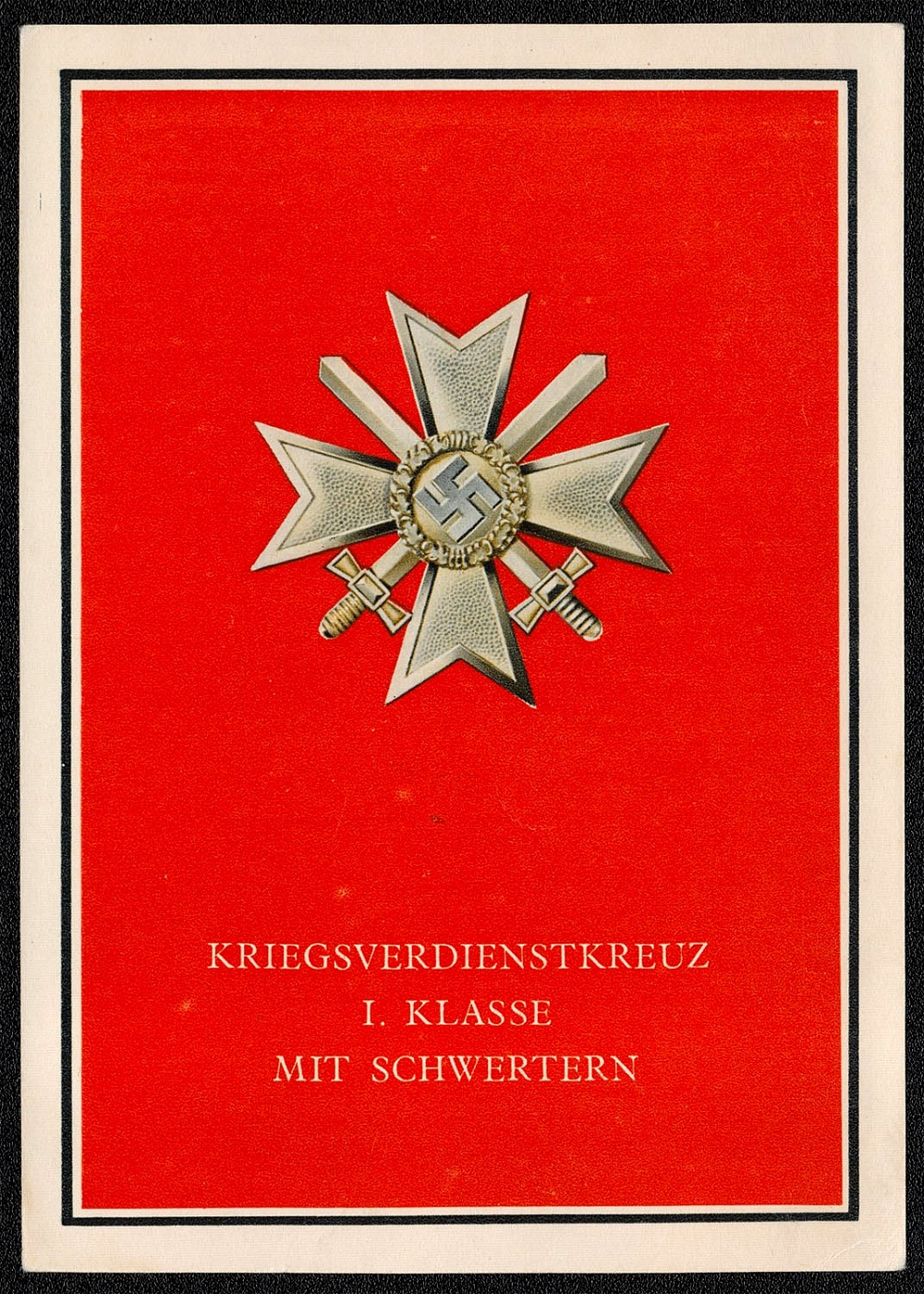
1941 War Medals of the Greater German Reich War Service Cross, First Class with Swords
1941 War Medals of the Greater German Reich War Service Cross, First Class with Swords
Unsold
228
-
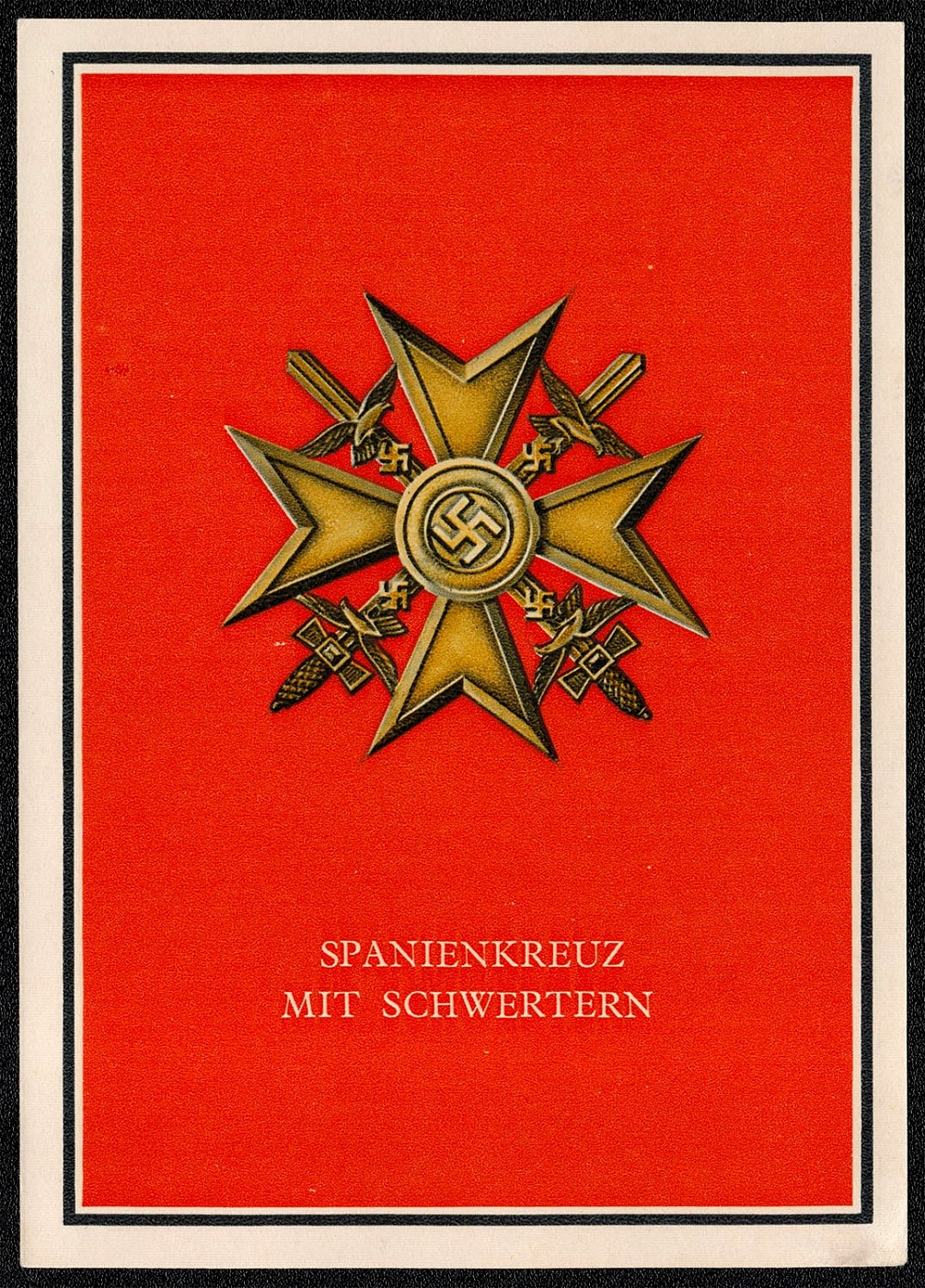
1941 War Medals of the Greater German Reich Spanish Cross
1941 War Medals of the Greater German Reich Spanish Cross
Unsold
229
-
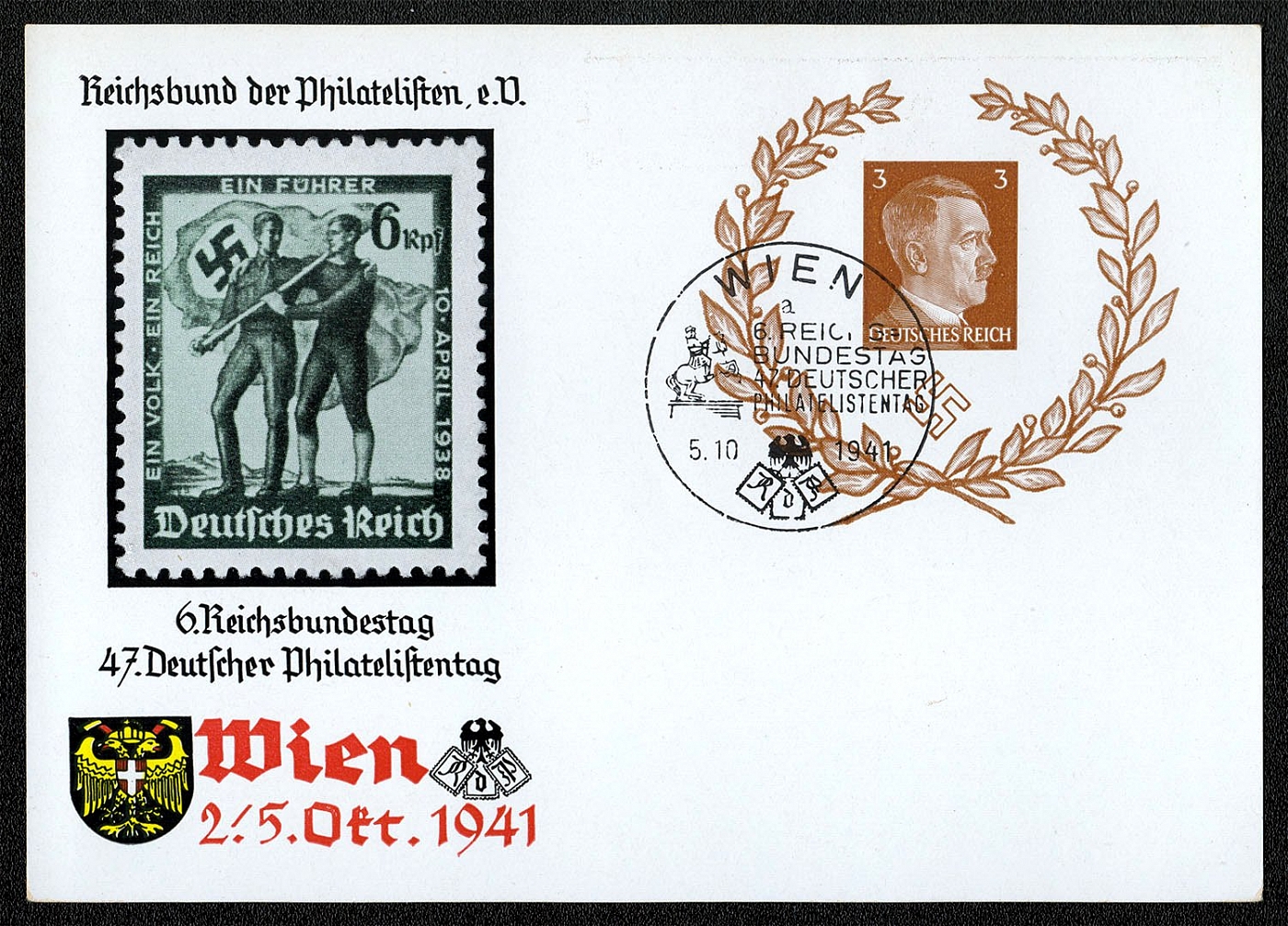
1941 National Society of Philatelists for the forty-seventh German Philatelist Day
The semiofficial souvenir card ordered by the National Society of Philatelists for the forty-seventh German Philatelist Day. Depicted is the 1938 Austrian Plebiscite adhesive stamp issue. The special postmark depicting the Prinz-Eugen-Denkmal translates, Sixth National Philatelist Association Day and Forty-seventh German Philatelist Day. It was in use from 3 to 5 October 1941 in Wien only.
Unsold
230
-
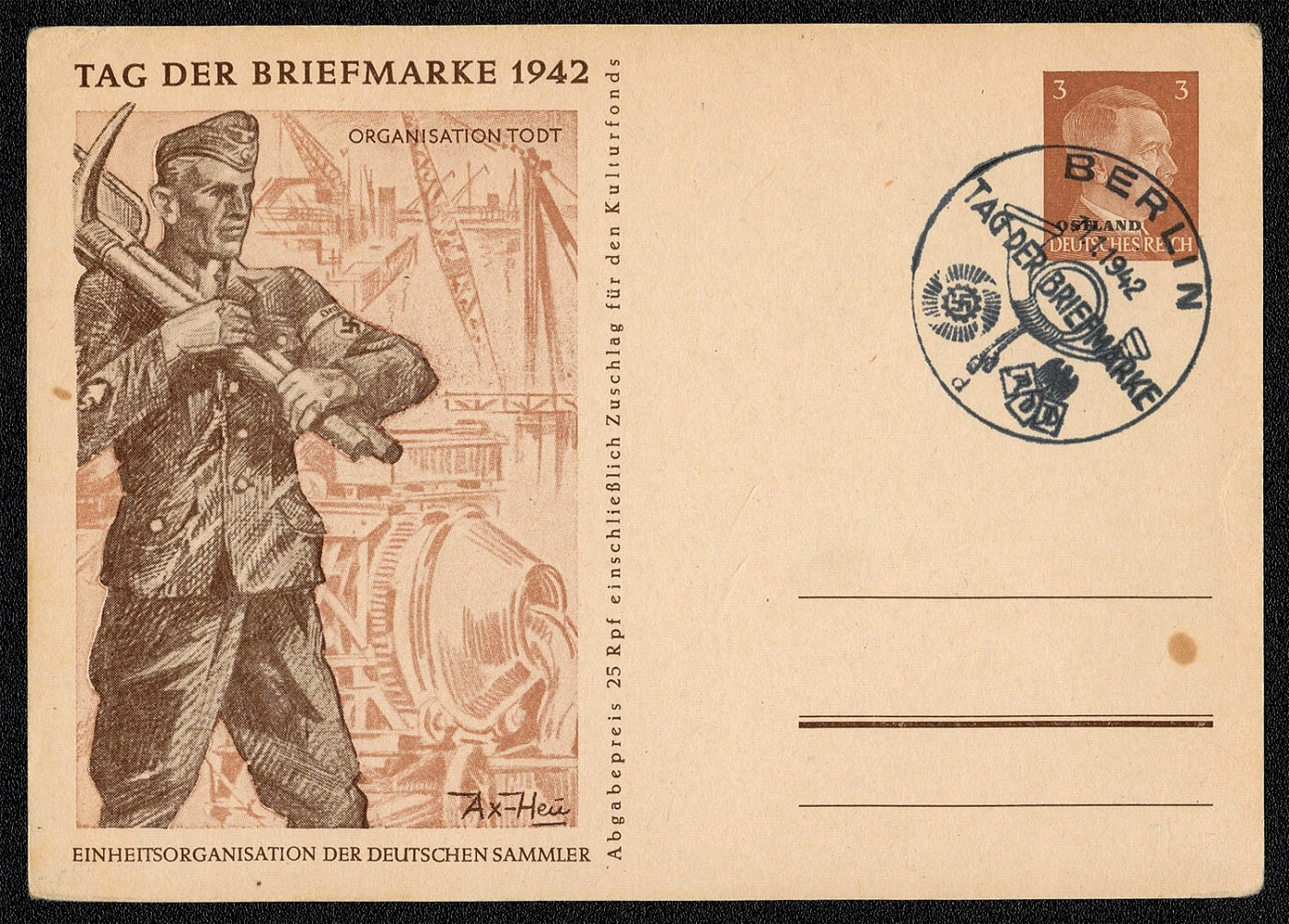
1942 The Day of the Stamp Special postmark Berlin
Design by E. Stahl. Photogravure printing on unwatermarked paper at the State Printing Works, Wien. Perforated 14 x 13%. Issued 11 January 1942. valid until 31 December 1942. The first time the Day of the Stamp was commemorated with a stamp issue. Four official postal stationery cards were issued for the 1942 Day of the Stamp on two types of cardstock, cream and chamois. Designed by Axster-Heudtlass, they were ordered by the Einheitsorganisation der Deutschen Sammler (United Organization of German Collectors), and sold for 25 Rpf. The cards were also overprinted for Ukraine and Ostland. The card above, Organisation Todt on cream colored stock, is overprinted Ostland. The Gefiilligkeitsstempel (favor cancellation) dated 11 January 1942, Berlin, depicts a posthorn. The initials RdP stand for Reichsbund der Philatelisten, part of the KdF.
Unsold
231
$30
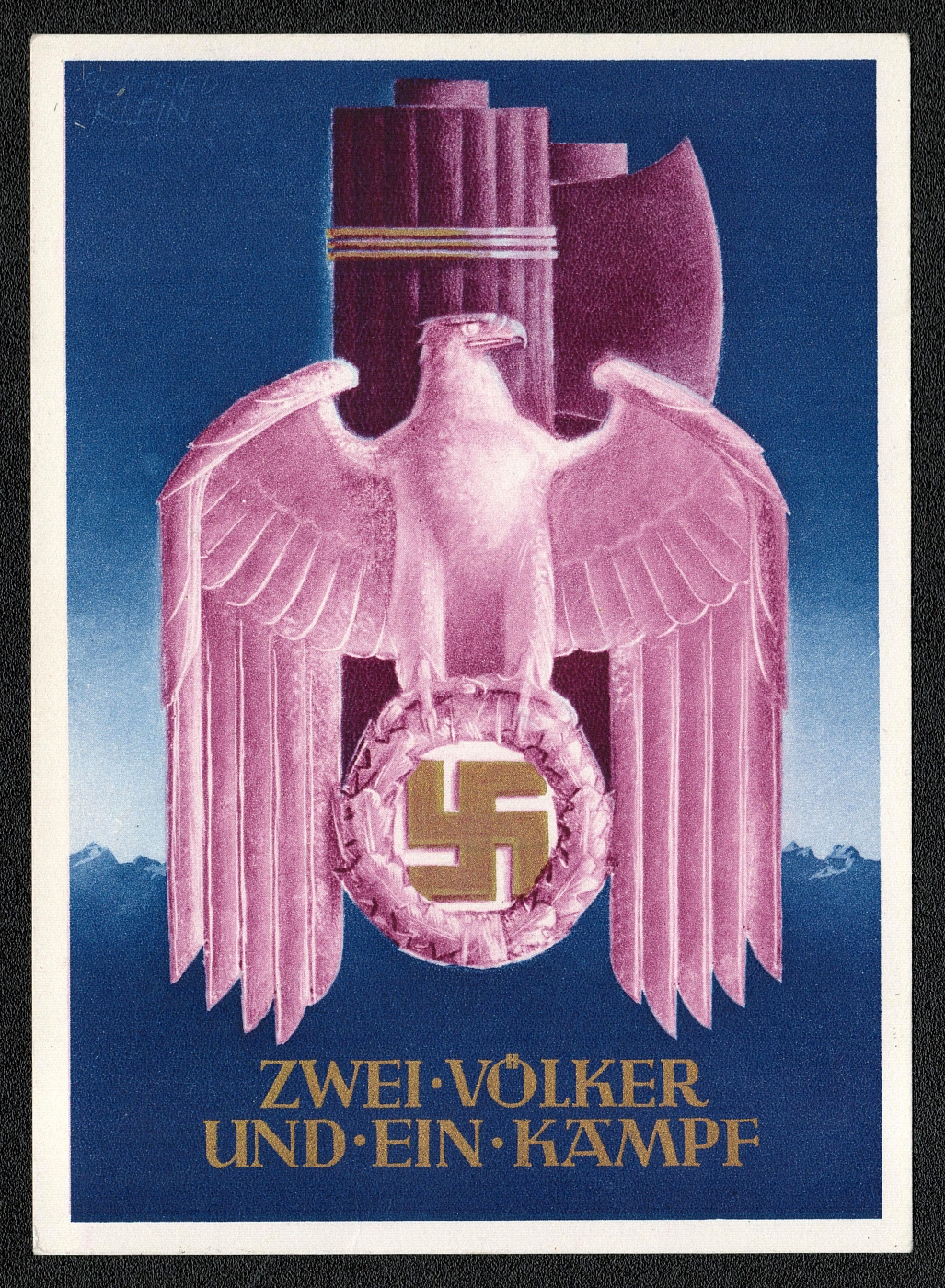
1942 Munich, Two peoples and one fight Day of the wehrmacht
1942 Munich, Two peoples and one fight Day of the wehrmacht
Sold for:
$30
232
$30
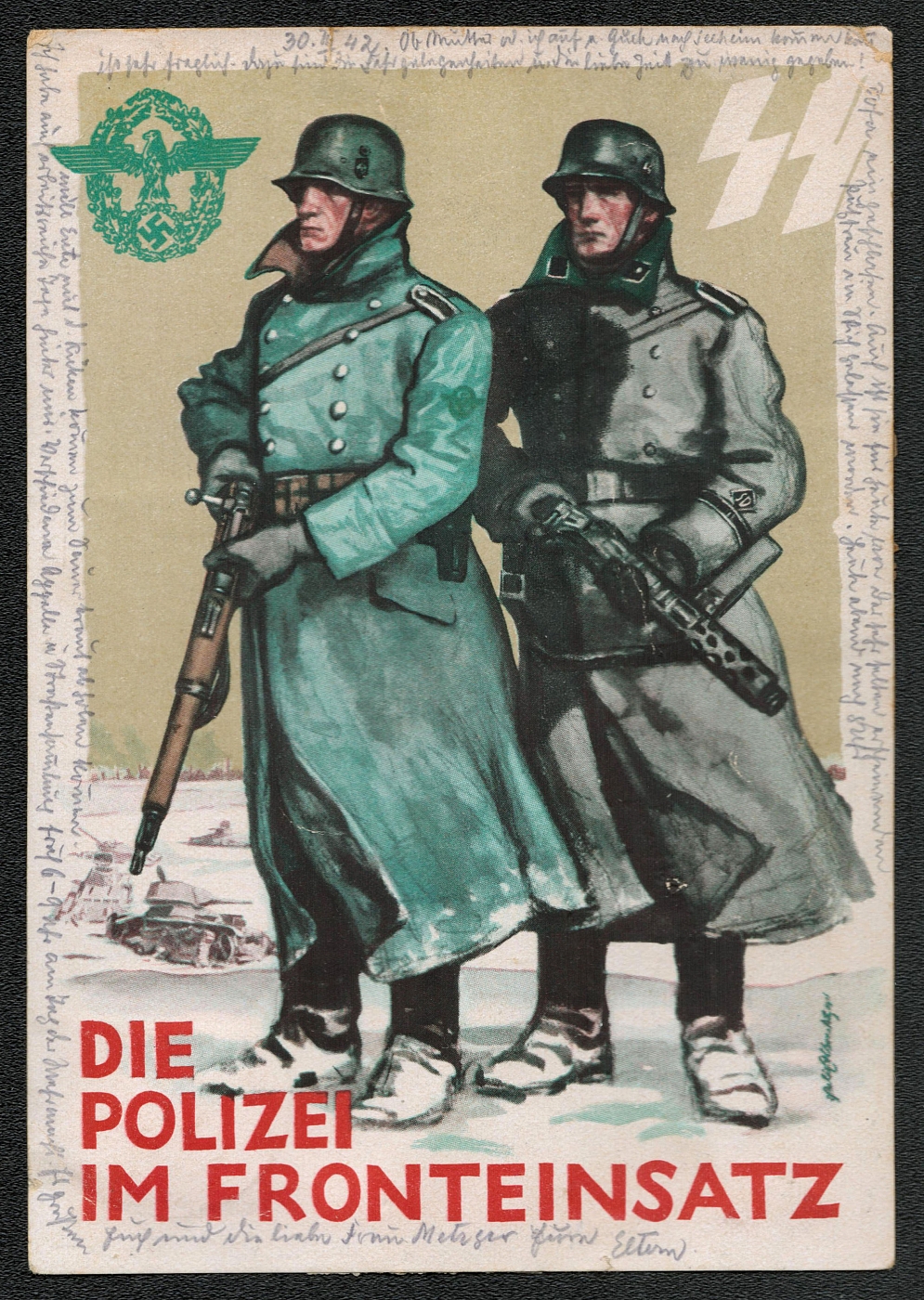
233
-
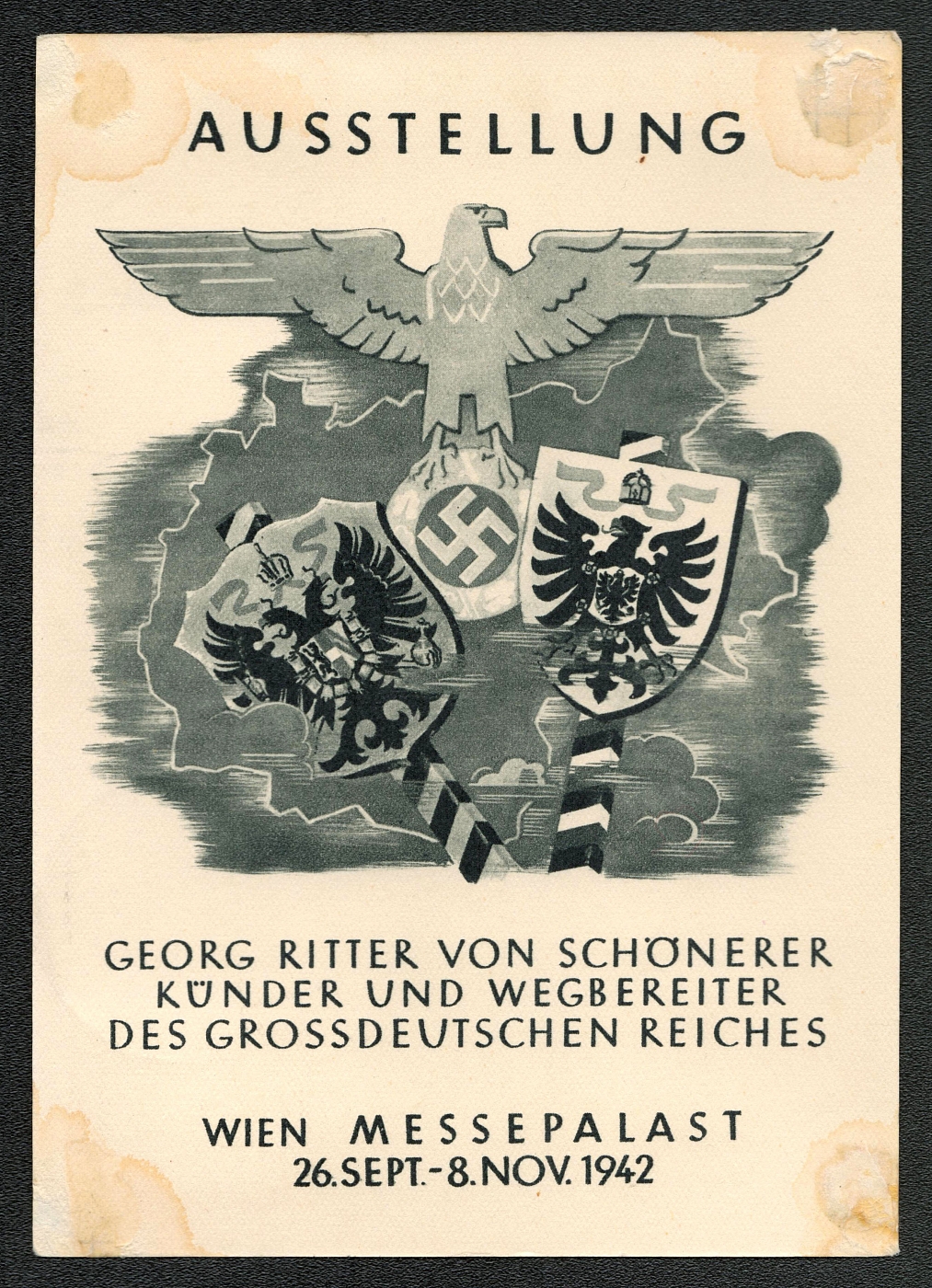
1942 Exhibition Georg Ritter Von Schönerer Children And Pioneers Of The Greater German Empire
Exhibition Georg Ritter Von Schönerer Children And Pioneers Of The Greater German Empire
Unsold
234
-
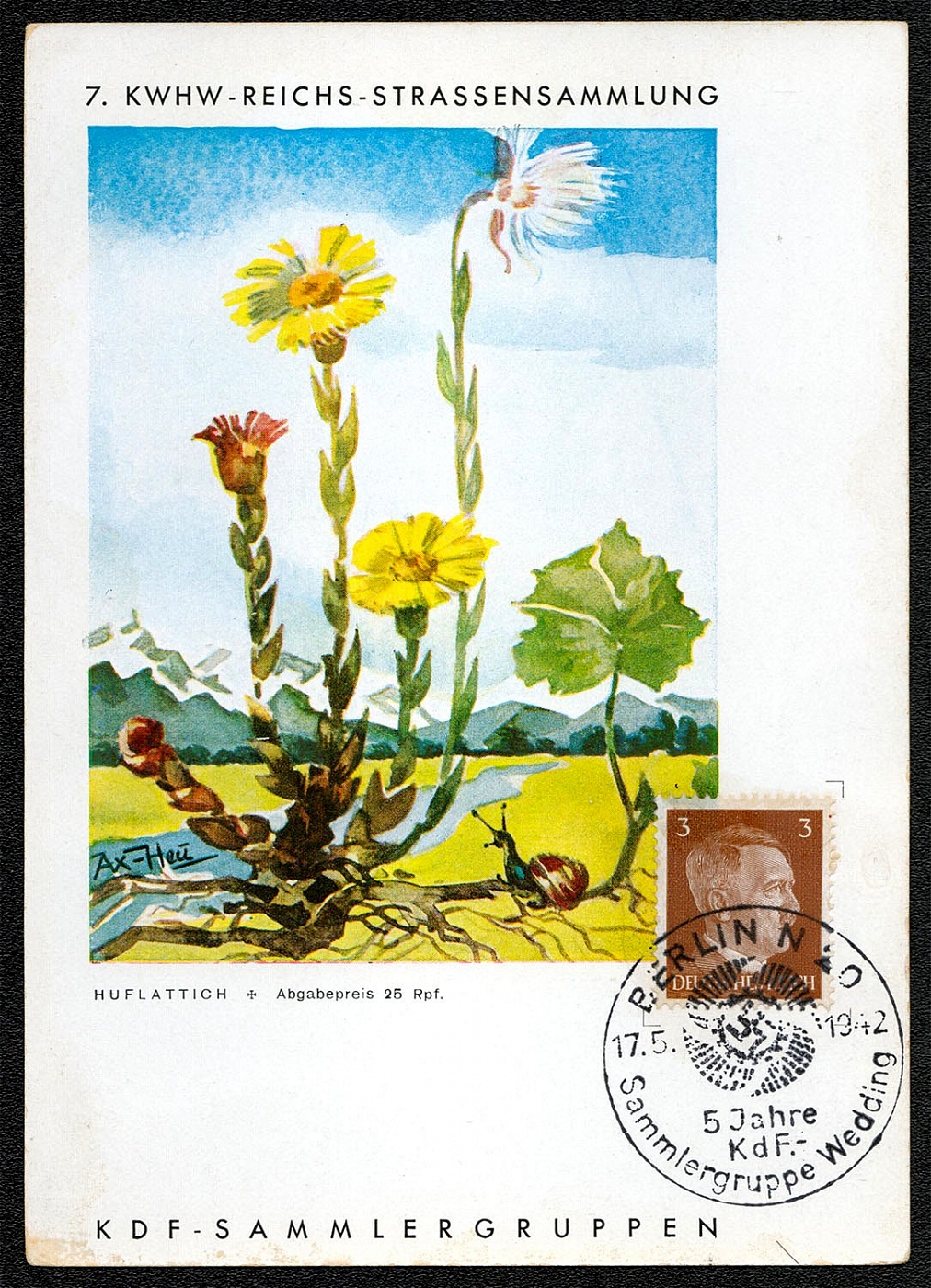
1942 Street Collections Donation Card
Sold for 25 Rpf. by the Kreigswinterhilfswerk, (KWHW) or Wartime Winter Relief Agency. The von Axster-Heudtlass drawing depicts huflattich or coltsfoot, a plant native to Europe having yellow flowers that appear before the heart-shaped leaves. The full meaning of the commemorative cancellation on Sc 507 is unknown at this time, but it was struck 17 May 1942 at Postamt Berlin N20 in honor of the KdF Stamp Collectors Group.
Unsold
235
-
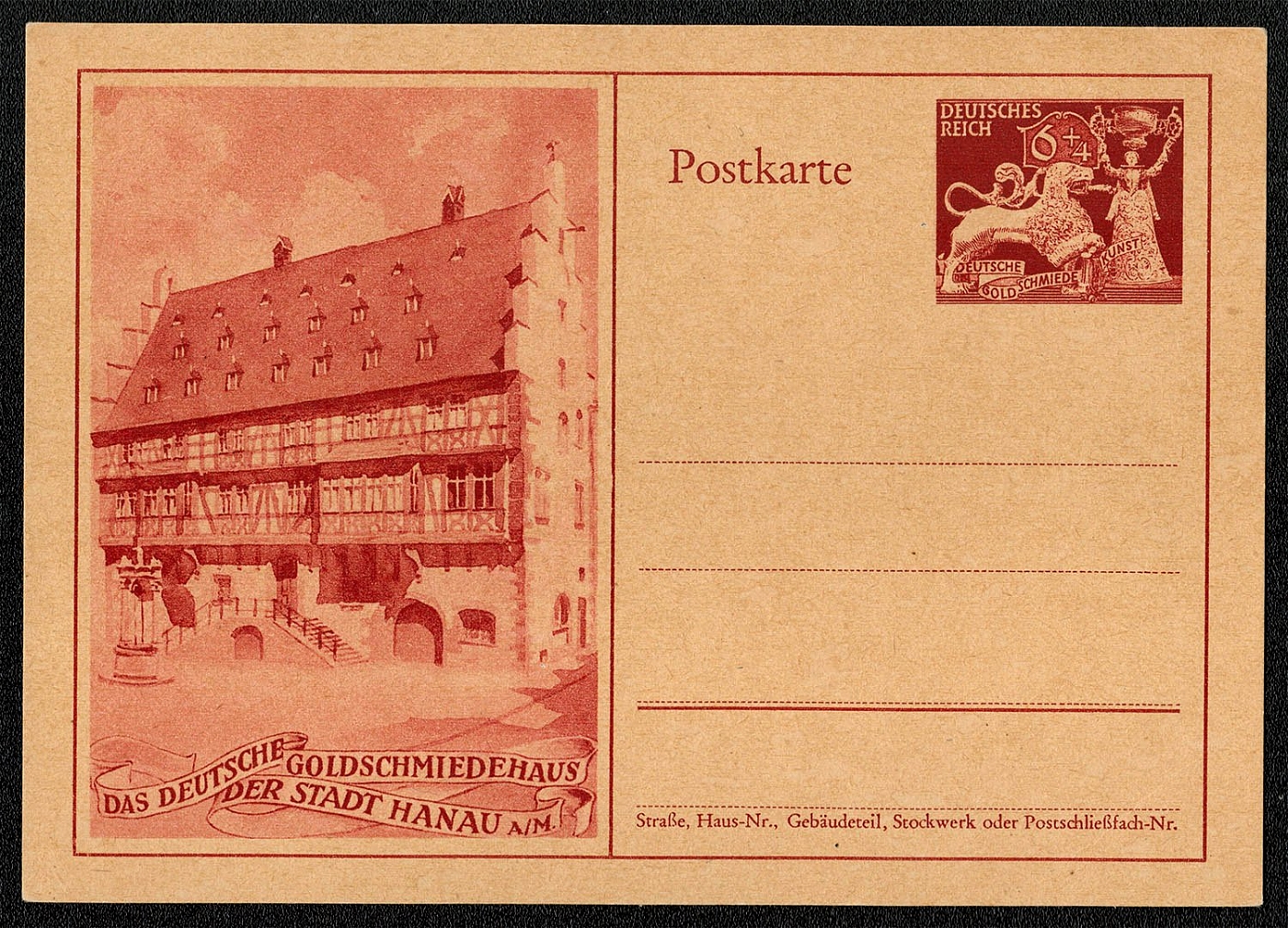
1942 Special Card for the German Institution for Goldsmith’s Art
(The German Goldsmiths House in the City of Hanau A/M.) Michel P 293. Design by Gustav Tischer of Berlin. Printed on cream colored cardstock at the State Printing Works in Wien. Issued 8 August 1942. This building was either an old guildhouse or a model of one. It was used as a museum for the Goldsmiths Guild, with examples of its craftsmanship on display.
Unsold
236
$35
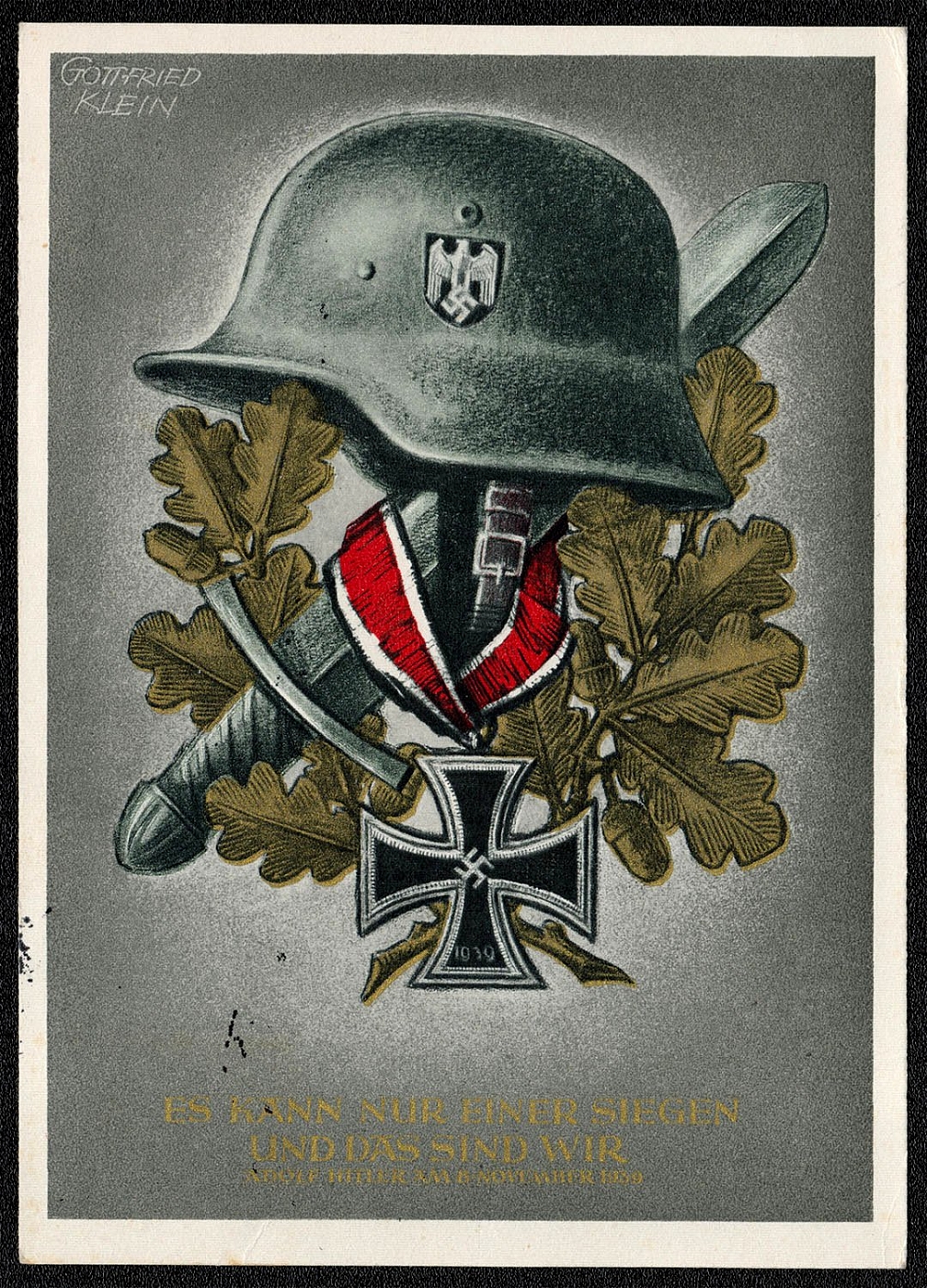
"1942 Munich ""Only one of us can be the victor and that is we"""
22/23 August 1942 Munich The cancellations promote the Wartime Relief for the German Red Cross. A postal stationery designed by Gottfried Klein and published by Heinrich Hoffmann. The inscription reads: “Only one of us can be the victor and that is we.” It is a quote from Hitler’s speech of 8 November 1939.
Sold for:
$35
237
-
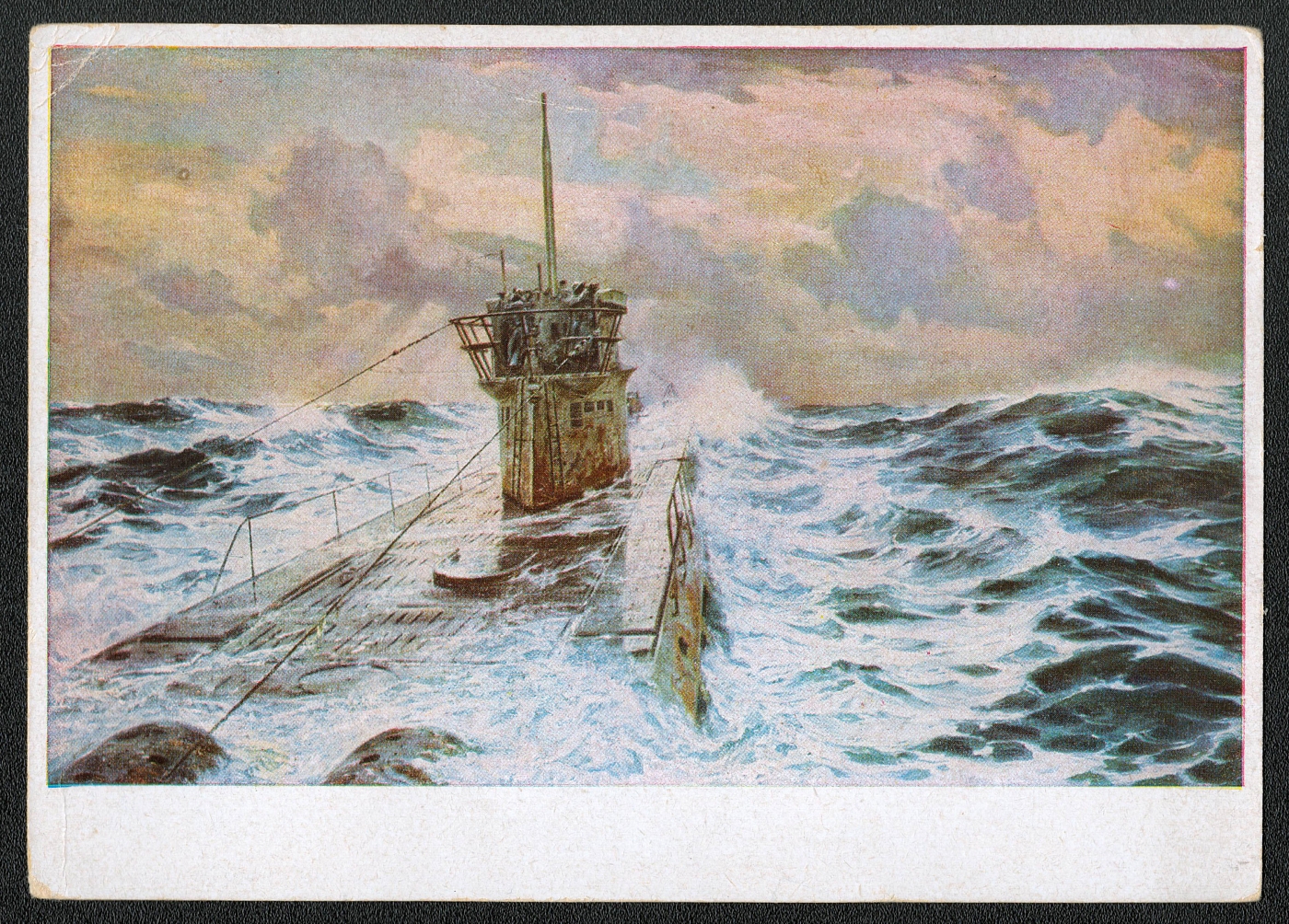
"1942 Munich House of German Art Claus Bergen ""In the battle zone of the Atlantic"""
"1942 Munich House of German Art Claus Bergen ""In the battle zone of the Atlantic"""
Unsold
238
$20
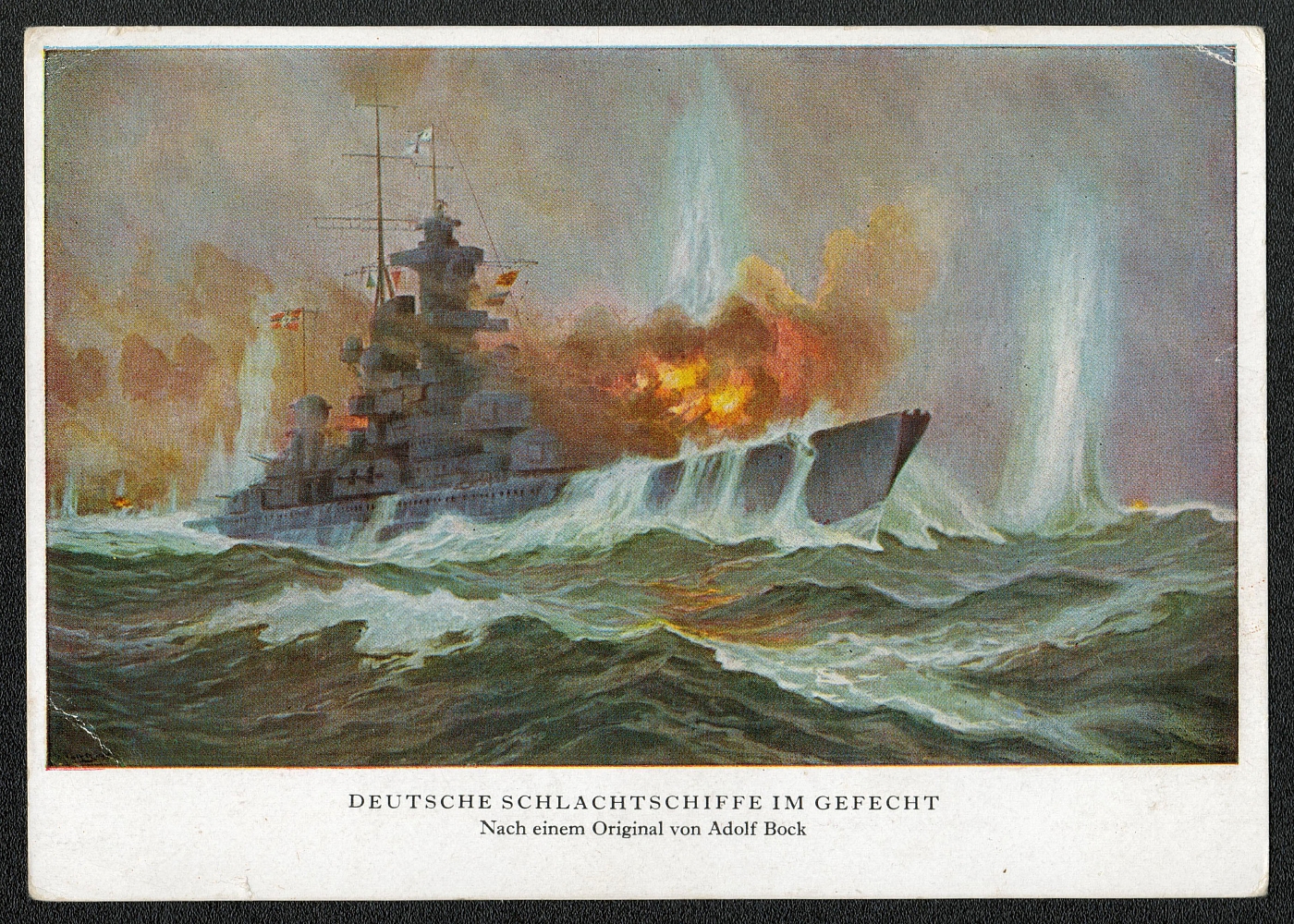
239
-
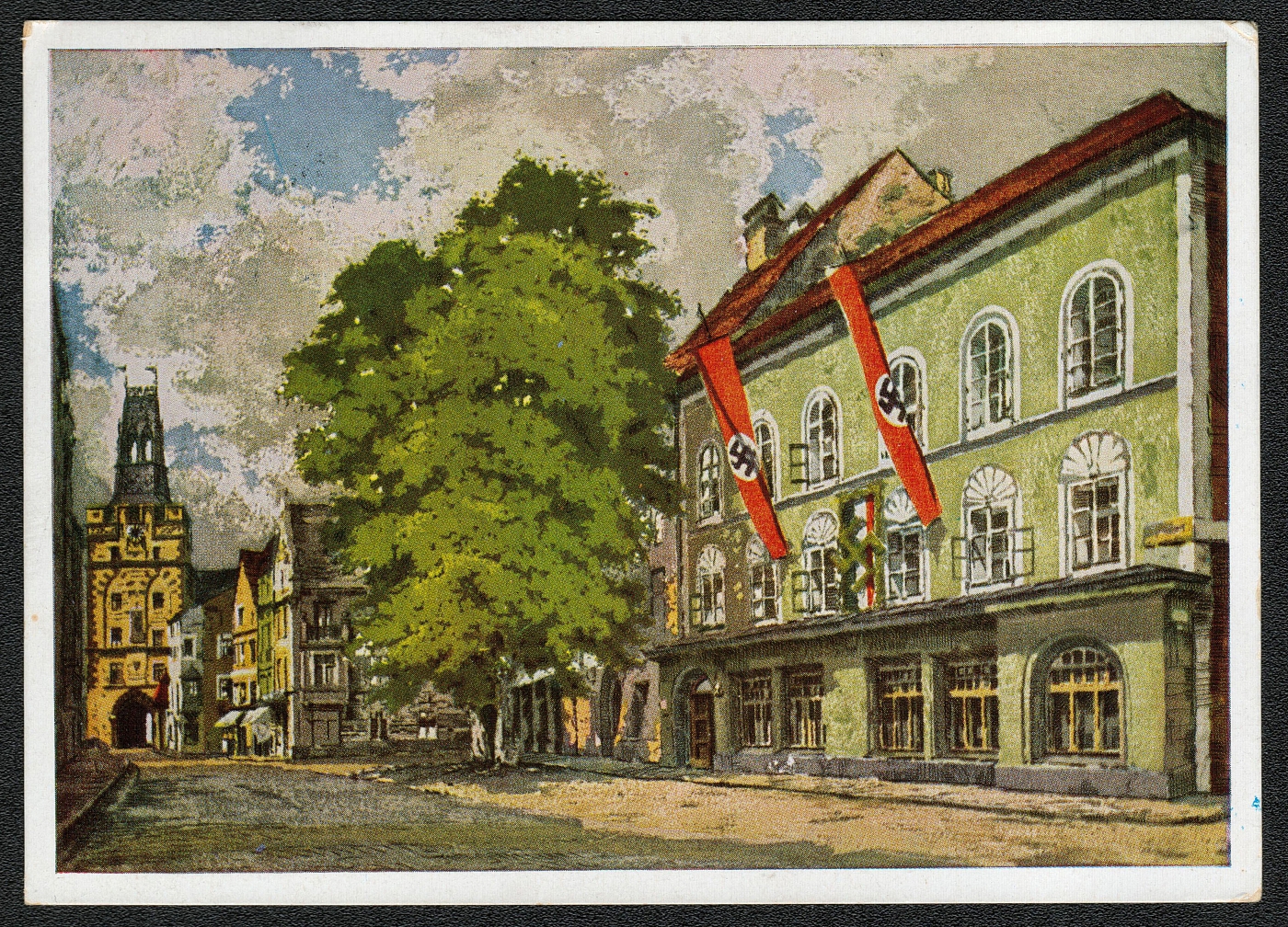
1942 Adolf Hitler birth house Special Postmark Munich
1942 Adolf Hitler birth house Special Postmark Munich
Unsold
240
-
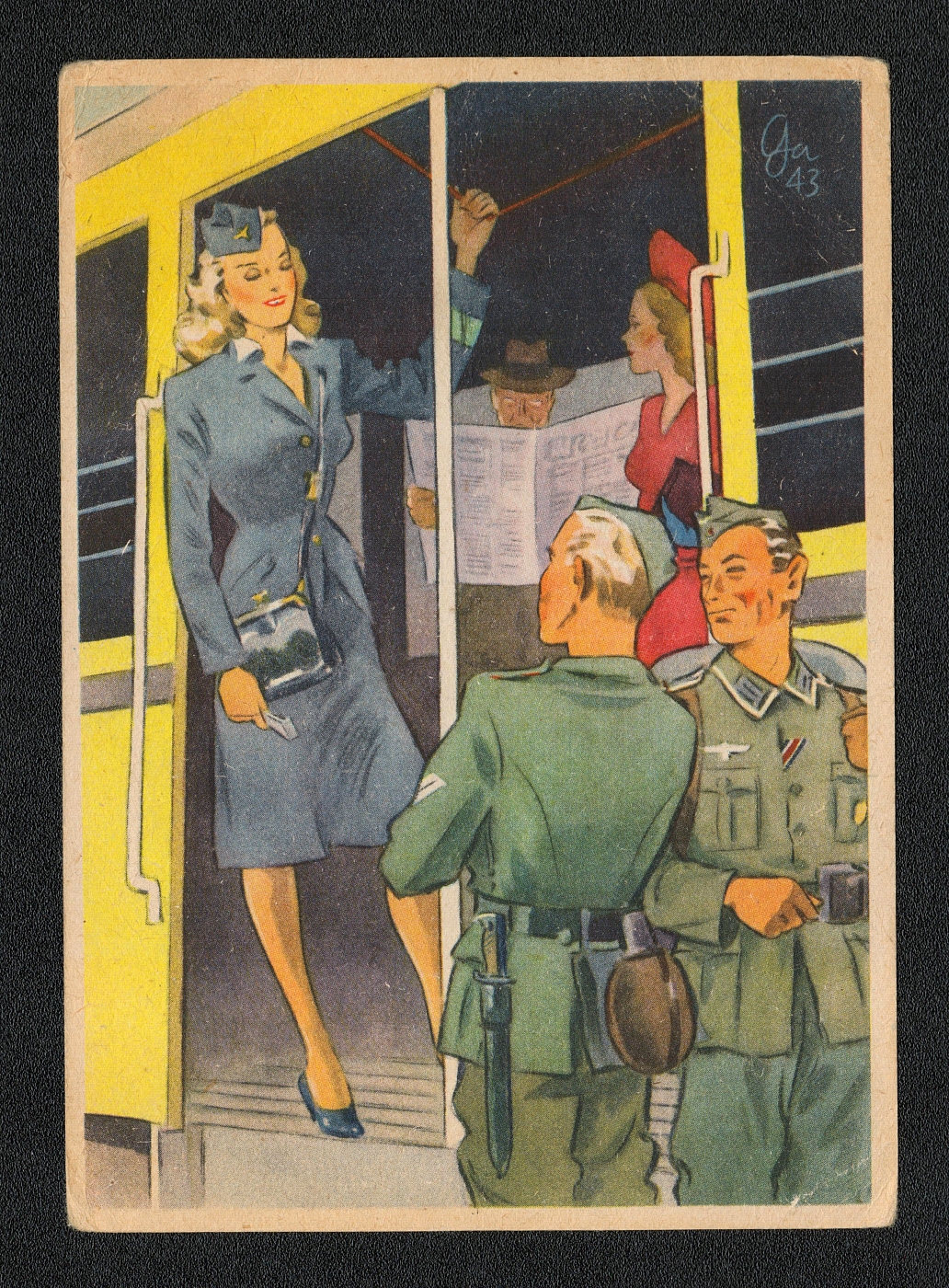
241
$25
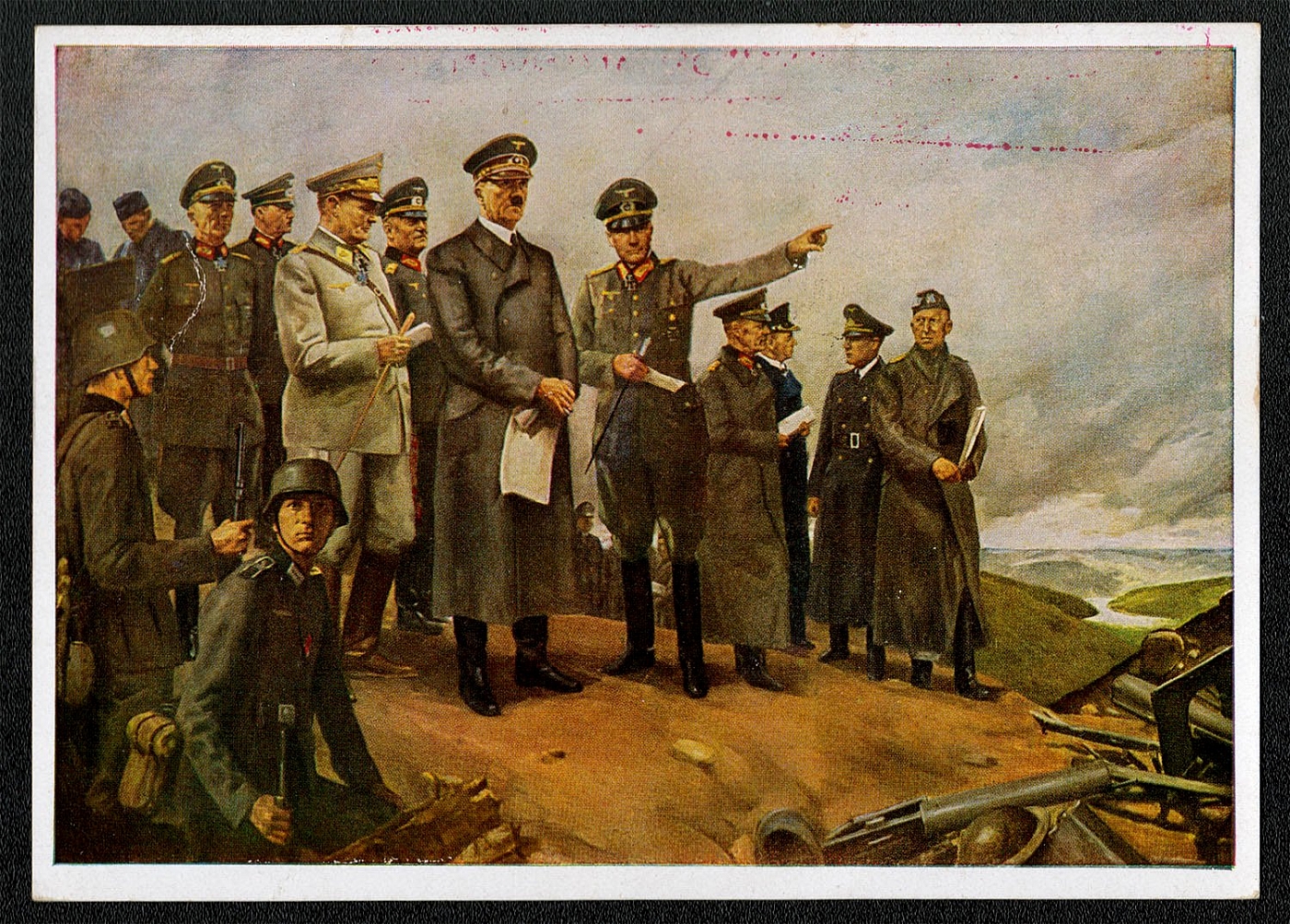
1943 German Official Mail Prealps Postcard The Fuhrer at the Battlefield, Italy Stamp
Conrad Hommel (“The Fuhrer at the Battlefield”) was published by Verlag Heinrich Hoffmann of Munchen. The original was on display at the Haus der Deutschen Kunst in Miinchen. Depicted is Hitler on a mythical battlefield with Reichsmarschall Goring to his right, and Feldmarshall Erwin Rommel to his left. Propaganda card (Hommel’s “Der Fuhrer Im Kampfgelund”) sent through the Dienstpost Alpenvorland on 20 November 1943. Posted in Sterzing (Ital. Vipiteno), a small town in the Bolzano province Trentino-Alto Adige just south of the Brenner Pass. The card is franked with Scott No. 413 (Italian) and Scott B243 (German).
Sold for:
$25
242
$20
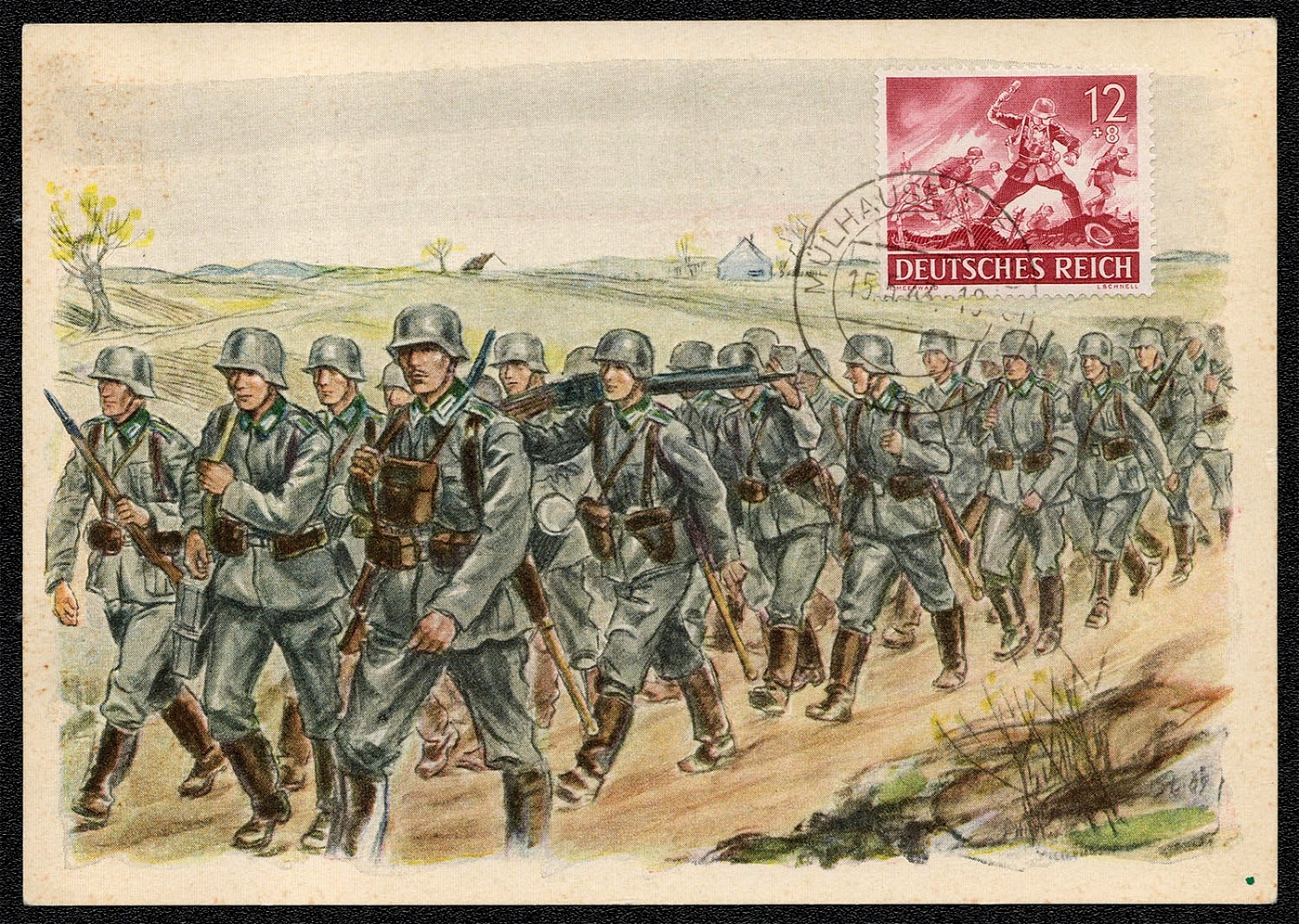
1943 Wehrmacht Souvenir Postcard The Infantry advances forward
Wehrmacht Souvenir Card No. 1 ranked with Scott B223 and cancelled 15 May 1943, Mulhausen, Elsass. This card was prepared by R. Winckler, Briefmarken Mulhausen/Els. Forst Staden 27b Postscheck Strassburg 324.45 Published by Verlag Grieshaber & Sduberlich (Propaganda Stuttgart), KI. Kbnigstr. 1
Sold for:
$20
243
$20
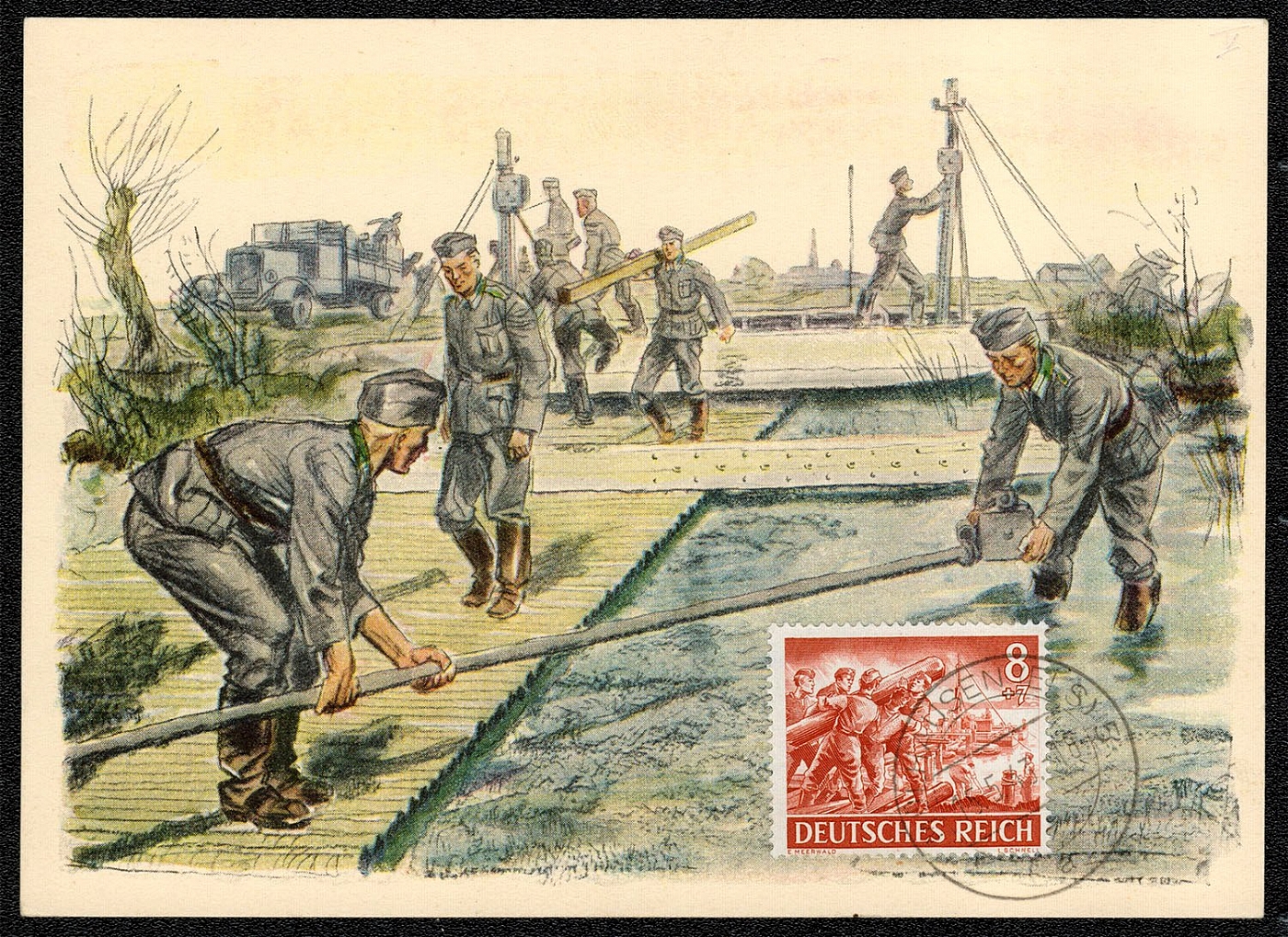
1943 Wehrmacht Souvenir Postcard The Pioneers build a bridge
Wehrmacht Souvenir Card No. 4 franked with Scott B222 and cancelled 15 May 1943, Mulhausen, Elsass. This card was prepared by R. Winckler, Briefmarken Mulhausen/Els. Forst Staden 27b Postscheck Strassburg 324.45 Published by Verlag Grieshaber & Sauberlich (Propaganda Stuttgart), KI. Kbnigstr. 1
Sold for:
$20
244
$20
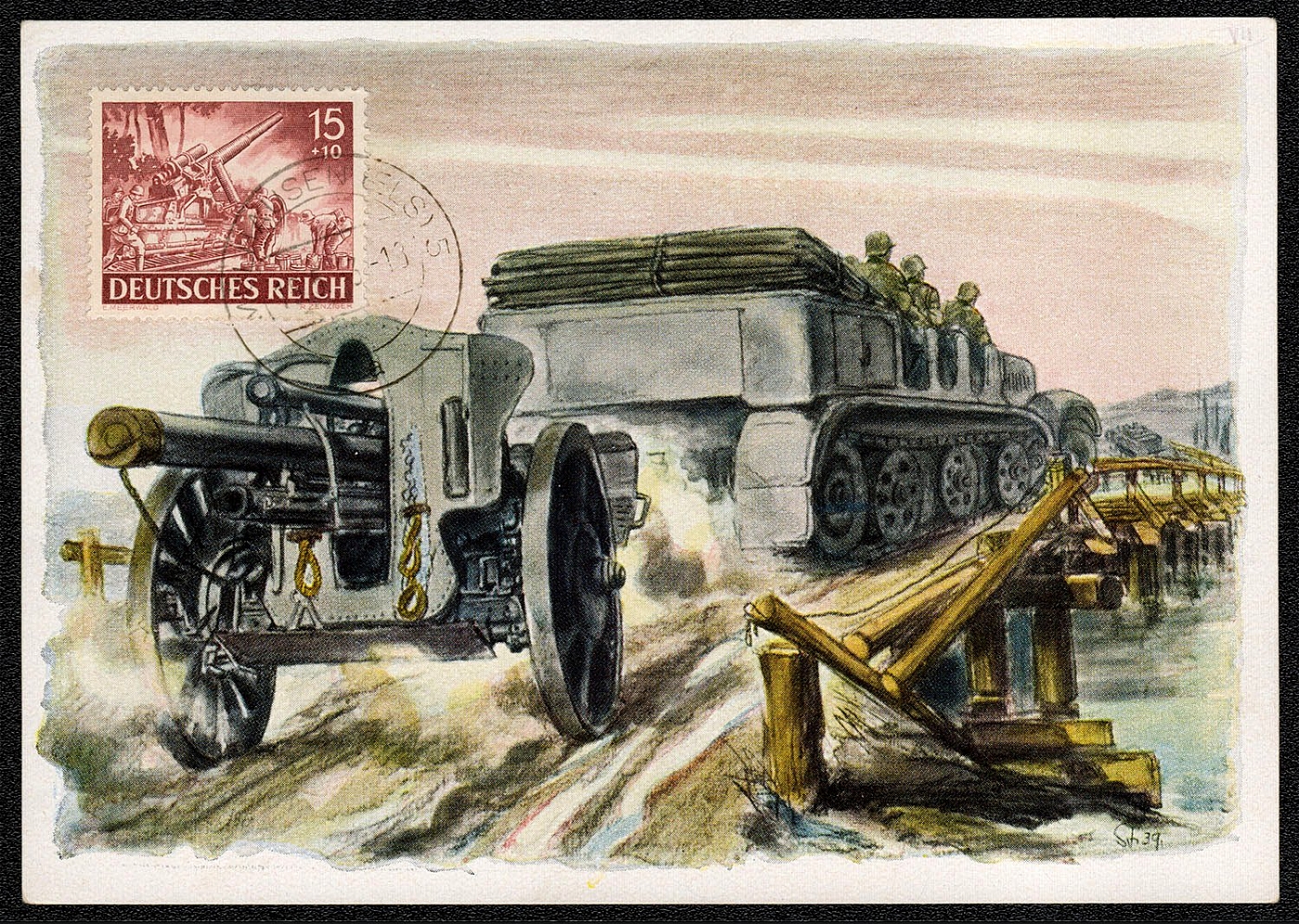
1943 Wehrmacht Souvenir Postcard The Howitzer is brought into position
Wehrmacht Souvenir Card No. 7 franked with Scott B223 and cancelled 15 May 1943, Mulhausen, Elsass. This card was prepared by R. Winckler, Briefmarken Mulhausen/Els. Forst Staden 27b Postscheck Strassburg 324.45 Published by Verlag Grieshaber & Sduberlich (Propaganda Stuttgart), KI. Kbnigstr. 1
Sold for:
$20
245
$20
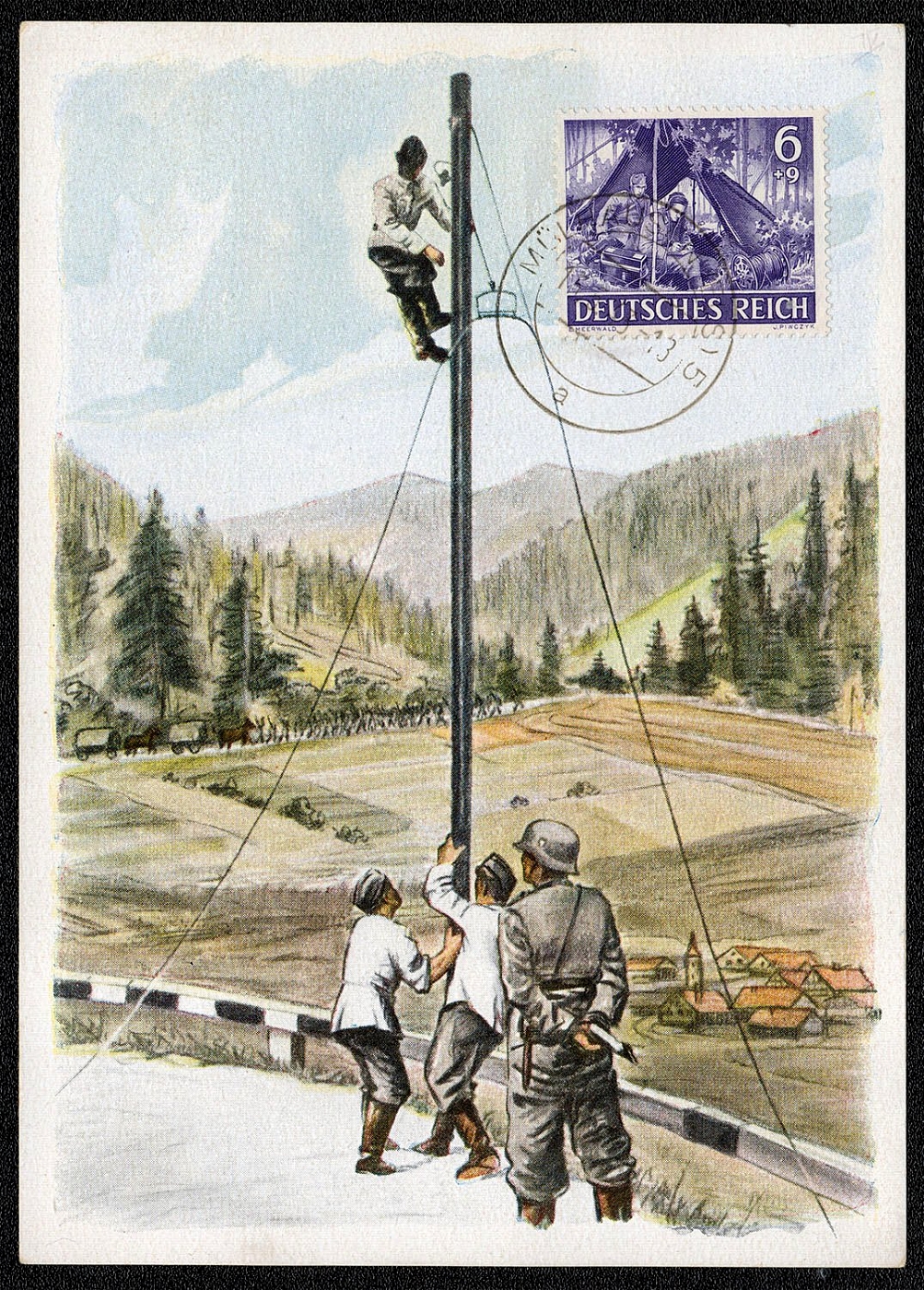
1943 Wehrmacht Souvenir Postcard The Signal Corps hanging heavyweight cable
Wehrmacht Souvenir Card No. 10 franked with Scott B221 and cancelled 15 May 1943, Mulhausen, Elsass. This card was prepared by R. Winckler, Briefmarken Mulhausen/Els. Forst Staden 27b Postscheck Strassburg 324.45 Published by Verlag Grieshaber & Sauberlich (Propaganda Stuttgart), KI. Konigstr. I
Sold for:
$20
246
$40
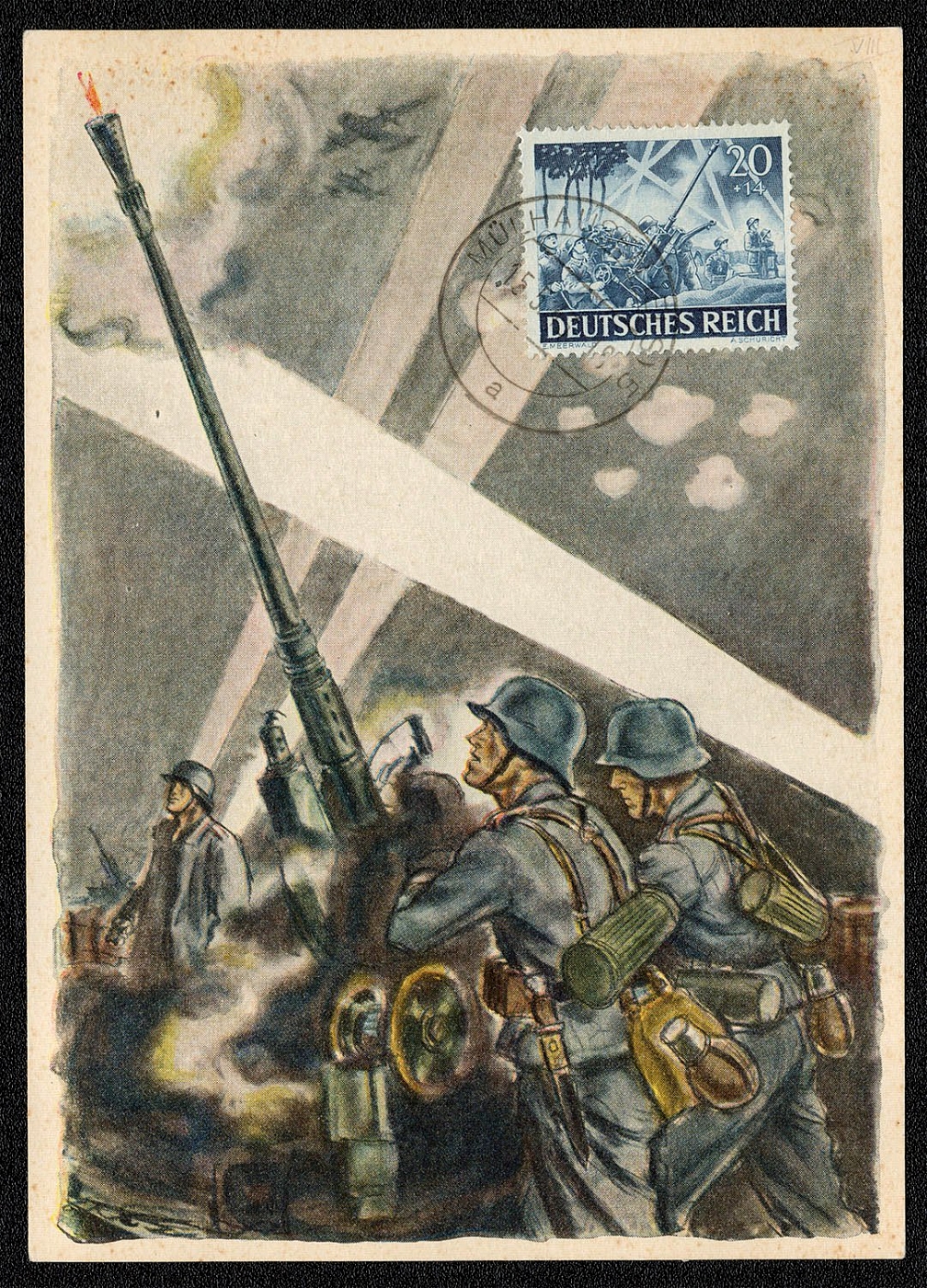
1943 Wehrmacht Souvenir Postcard Medium anti-aircraft artillery.
Wehrmacht Souvenir Card No. 15 franked with Scott B225 and cancelled 15 May 1943, Mulhausen, Elsass. This card was prepared by R. Winckler, Briefmarken Mulhausen/Els. Forst Staden 27b Postscheck Strassburg 324.45 Published by Verlag Grieshaber & Sduberlich (Propaganda Stuttgart), KI. Konigstr. 1
Sold for:
$40
247
$30
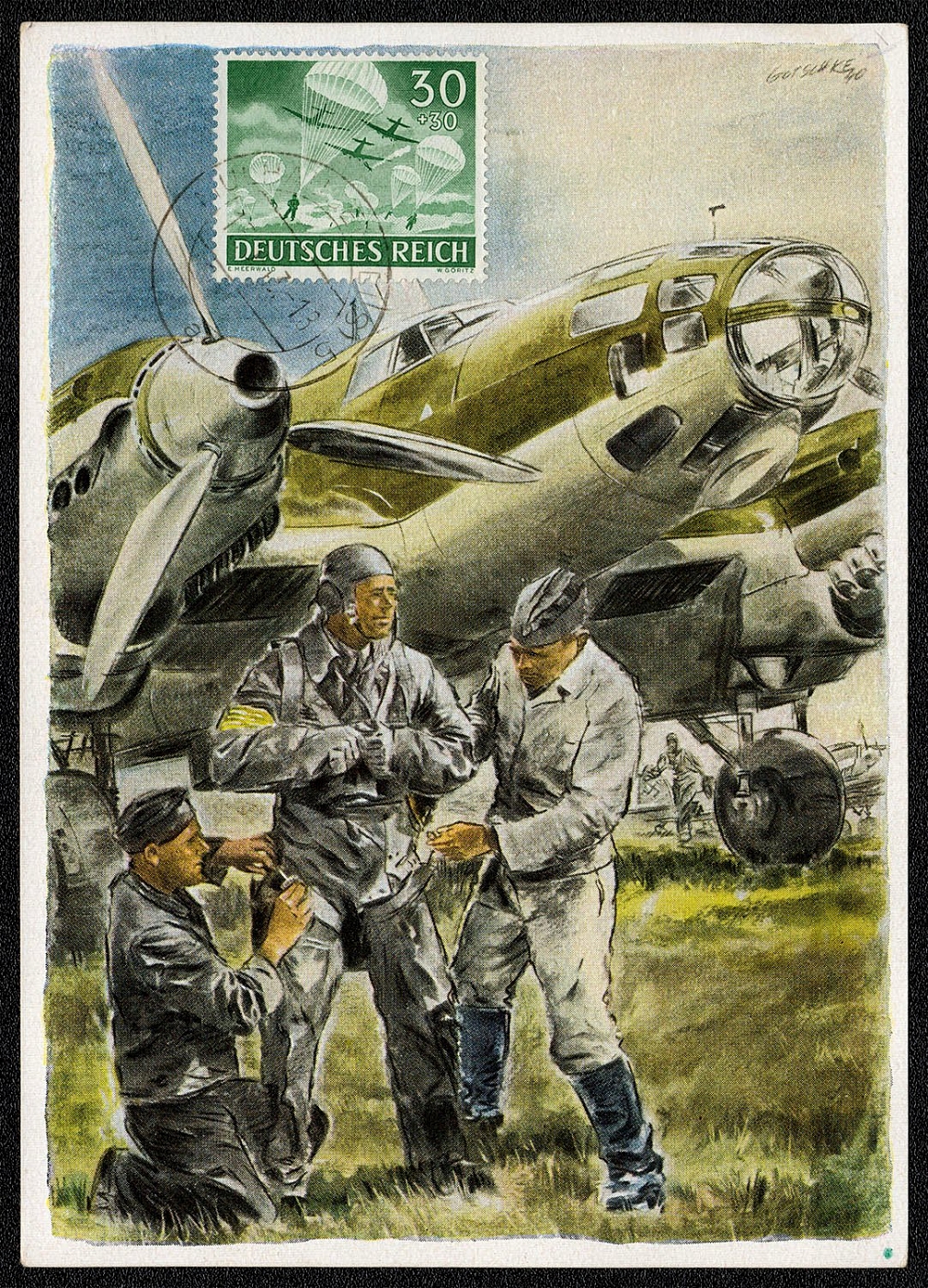
1943 Wehrmacht Souvenir Postcard Combat machine before the start
Wehrmacht Souvenir Card No. 17 franked with Scott B227 and cancelled 15 May 1943, Mulhausen, Elsass. This card was prepared by R. Winckler, Briefmarken Mulhausen/Els. Forst Staden 27b Postscheck Strassburg 324.45 Published by Verlag Grieshaber & Sduberlich (Propaganda Stuttgart), KI. Kbnigstr. 1
Sold for:
$30
248
$25
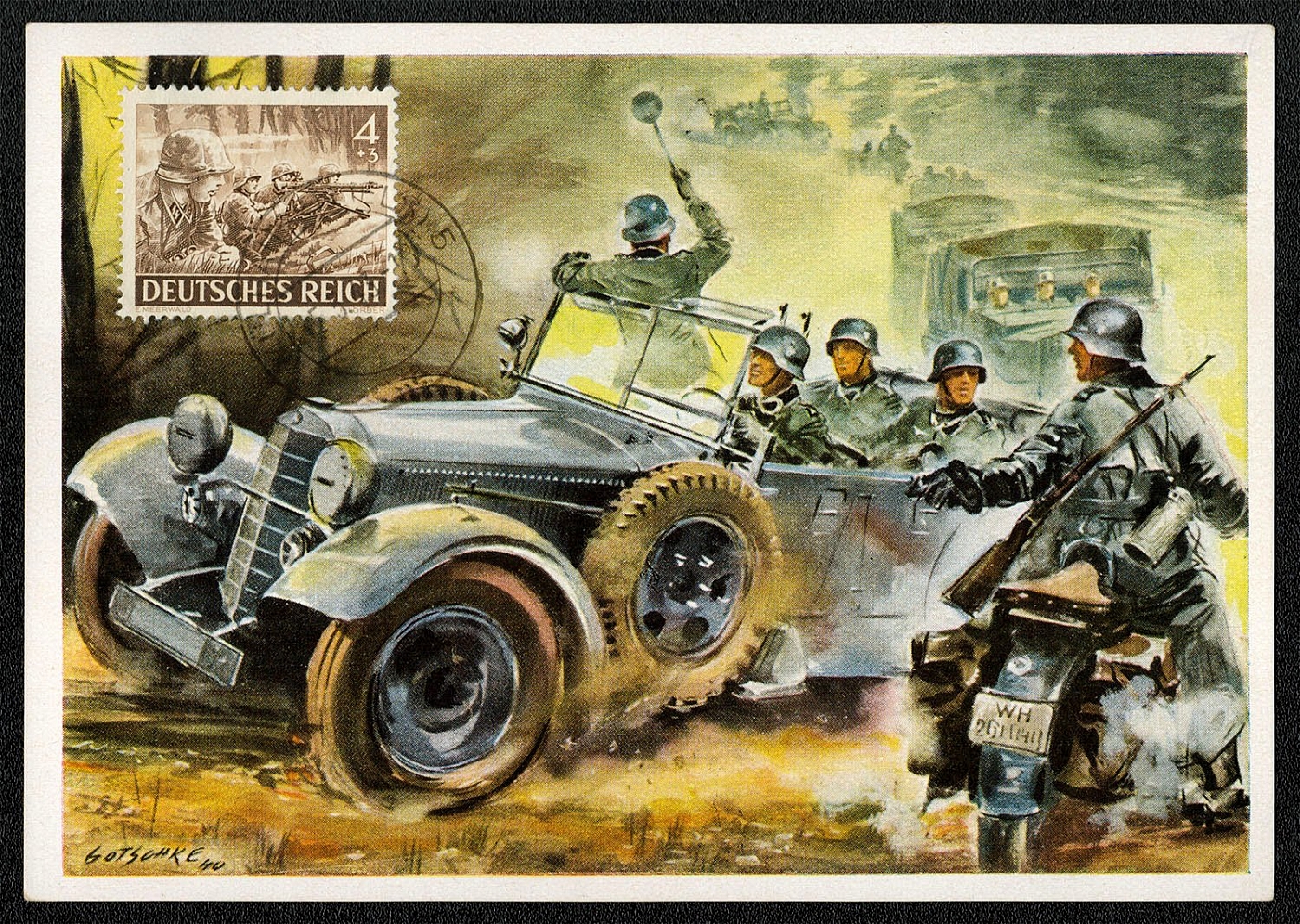
1943 Wehrmacht Souvenir Postcard Motorized Pioneers lead the way
Wehrmacht Souvenir Card No. 33 franked with Scott B219 and cancelled 15 May 1943, Mulhausen, Elsass. This card was prepared by R. Winckler, Briefinarken Mulhausen/Els. Forst Staden 27b Postscheck Strassburg 324.45 Published by Verlag Grieshaber & Sauberlich (Propaganda Stuttgart), KI. Konigstr. 1
Sold for:
$25
249
$30
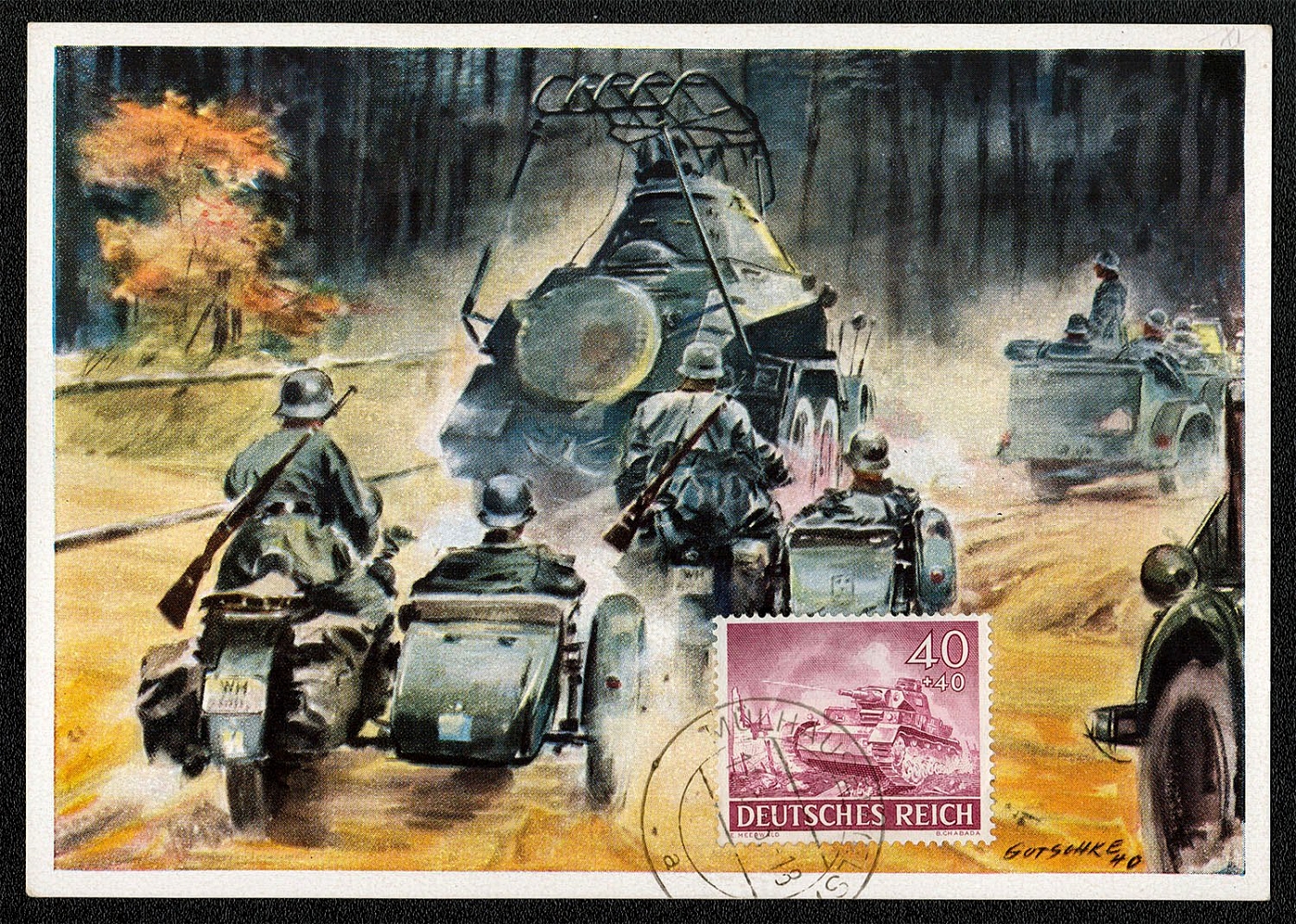
1943 Wehrmacht Souvenir Postcard A reconnaissance party with armored patrol car advances
Wehrmacht Souvenir Card No. 34 franked with Scott B228 and cancelled 15 May 1943, Mulhausen, Elsass. This card was prepared by R. Winckler, Briefmarken Mulhausen/Els. Forst Staden 27b Postscheck Strassburg 324.45 Published by Verlag Grieshaber & Sauberlich (Propaganda Stuttgart), KI. Konigstr. 1
Sold for:
$30
250
$30
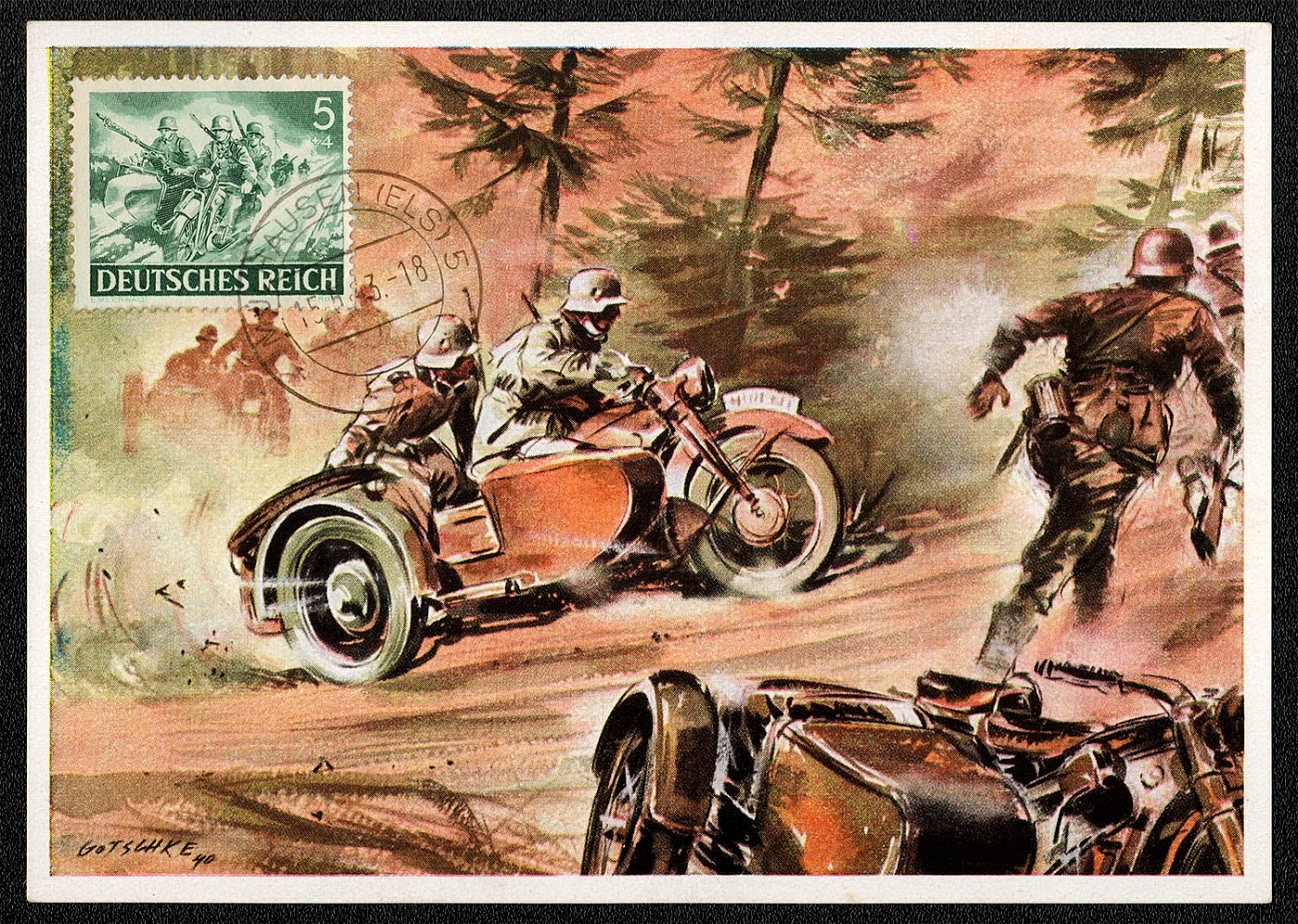
1943 Wehrmacht Souvenir Postcard Motorized Reconnaissance pushes ahead. Motorcycle riflemen hold on
Wehrmacht Souvenir Card No. 36 franked with Scott B220 and cancelled 15 May 1943, Mulhausen, Elsass. This card was prepared by R. Winckler, Briefmarken Mulhausen/Els. Forst Staden 27b Postscheck Strassburg 324.45 Published by Verlag Grieshaber & Sauberlich (Propaganda Stuttgart), KI. Kbnigstr. 1
Sold for:
$30
251
$45
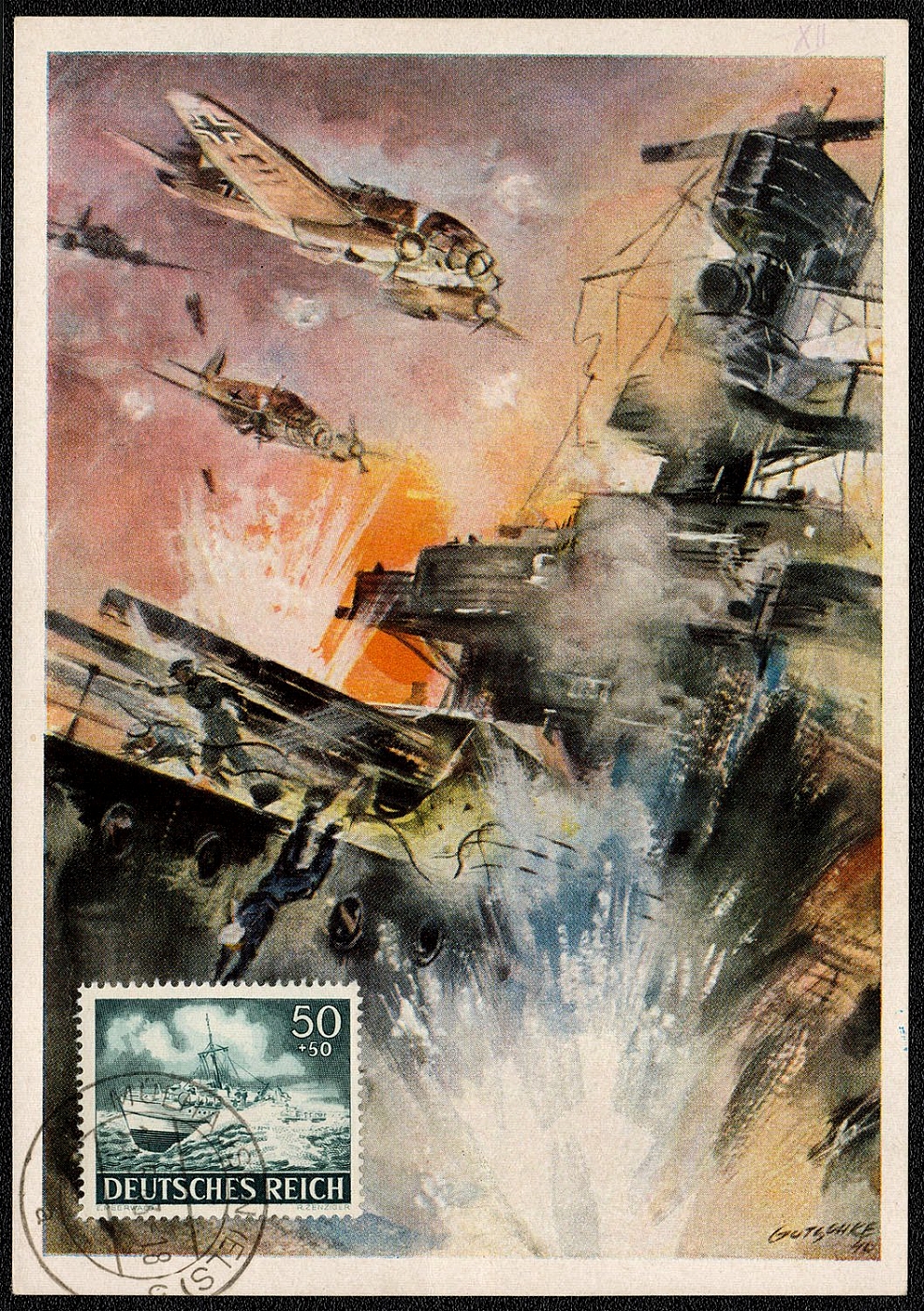
1943 Wehrmacht Souvenir Postcard Bombing attack against enemy warships
Wehrmacht Souvenir Card No. 37 franked with Scott B229 and cancelled 15 May 1943, Mulhausen, Elsass. This card was prepared by R. Winckler, Briefmarken Mulhausen/Els. Forst Staden 27b Postscheck Strassburg 324.45 Published by Verlag Grieshaber & Sauberlich (Propaganda Stuttgart), KI. Konigstr. 1
Sold for:
$45
252
$40
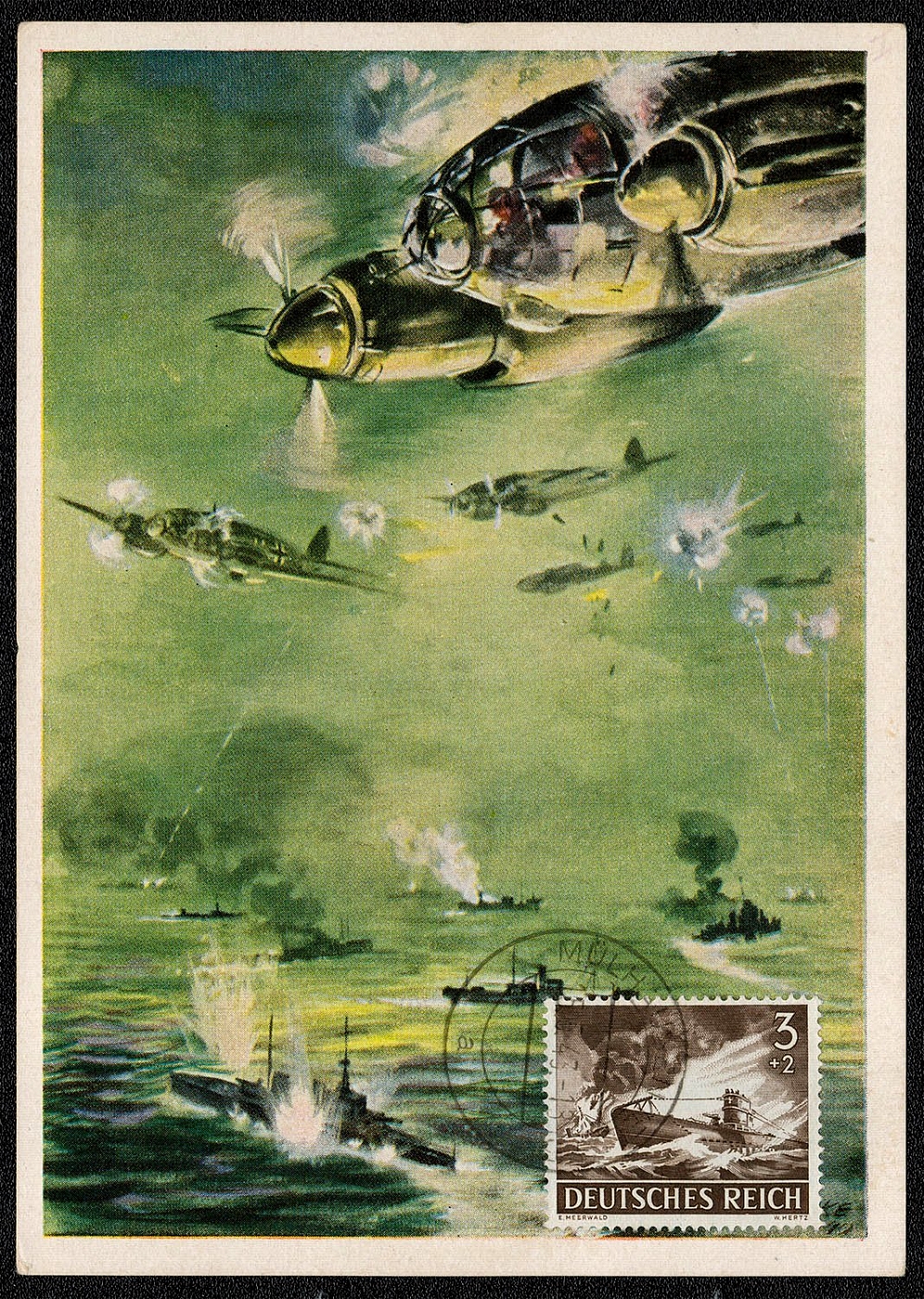
1943 Wehrmacht Souvenir Postcard Combat aircraft seize a naval convoy
Wehrmacht Souvenir Card No. 39 franked with Scott B218 and cancelled 15 May 1943, Mulhausen, Elsass This card was prepared by R. Winckler, Briefmarken Mulhausen/Els. Forst Staden 27b Postscheck Strassburg 324.45 Published by Verlag Grieshaber & Sduberlich (Propaganda Stuttgart), KI. Kbnigstr. 1
Sold for:
$40
253
$45
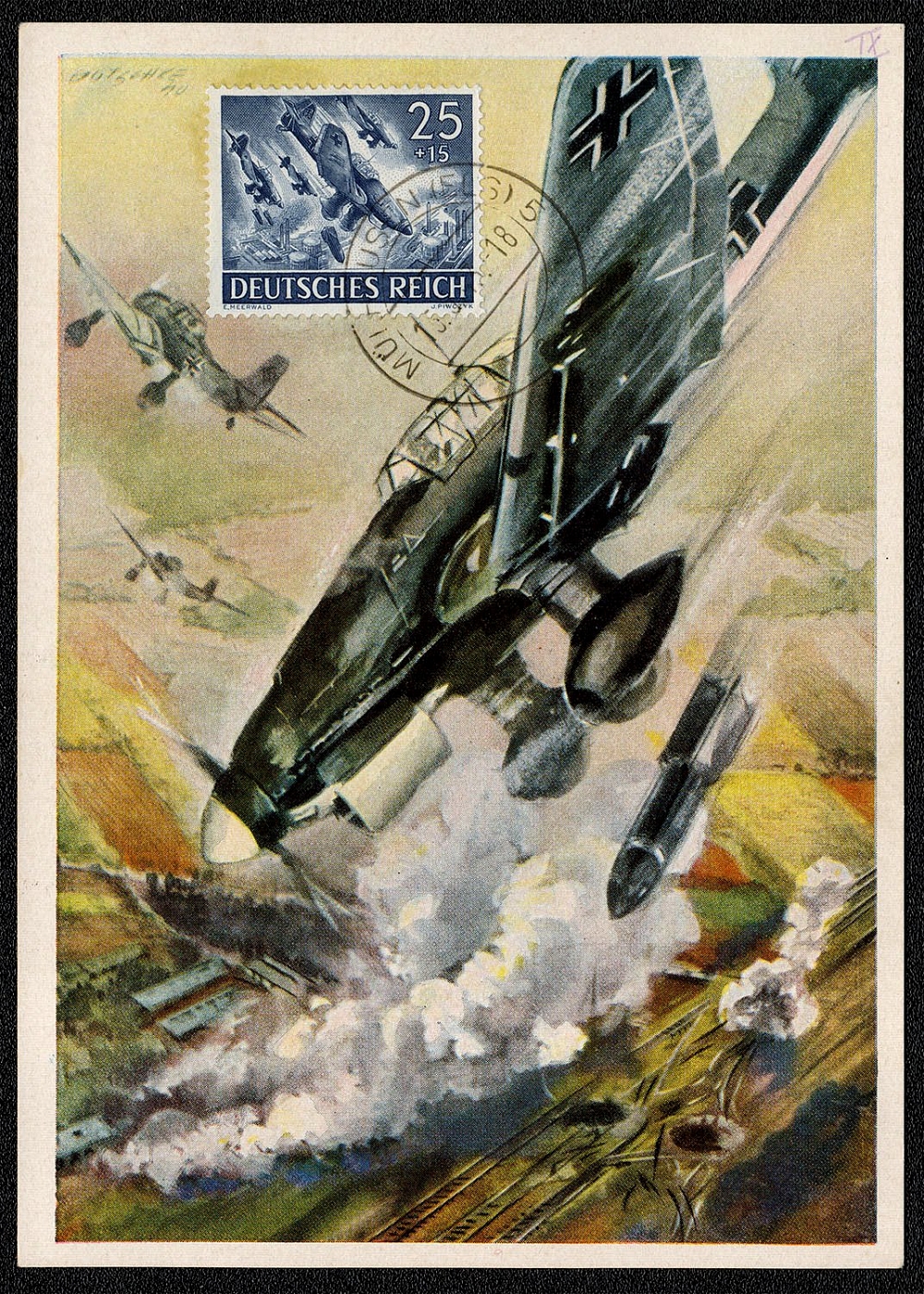
1943 Wehrmacht Souvenir Postcard Dive bombers in attack
Wehrmacht Souvenir Card No. 41 franked with Scott B226 and cancelled 15 May 1943, Mulhausen, Elsass. This card was prepared by R. Winckler, Briefmarken Mulhausen/Els. Forst Staden 27b Postscheck Strassburg 324.45 Published by Verlag Grieshaber & Sduberlich (Propaganda Stuttgart), KI. Konigstr. 1
Sold for:
$45
254
-
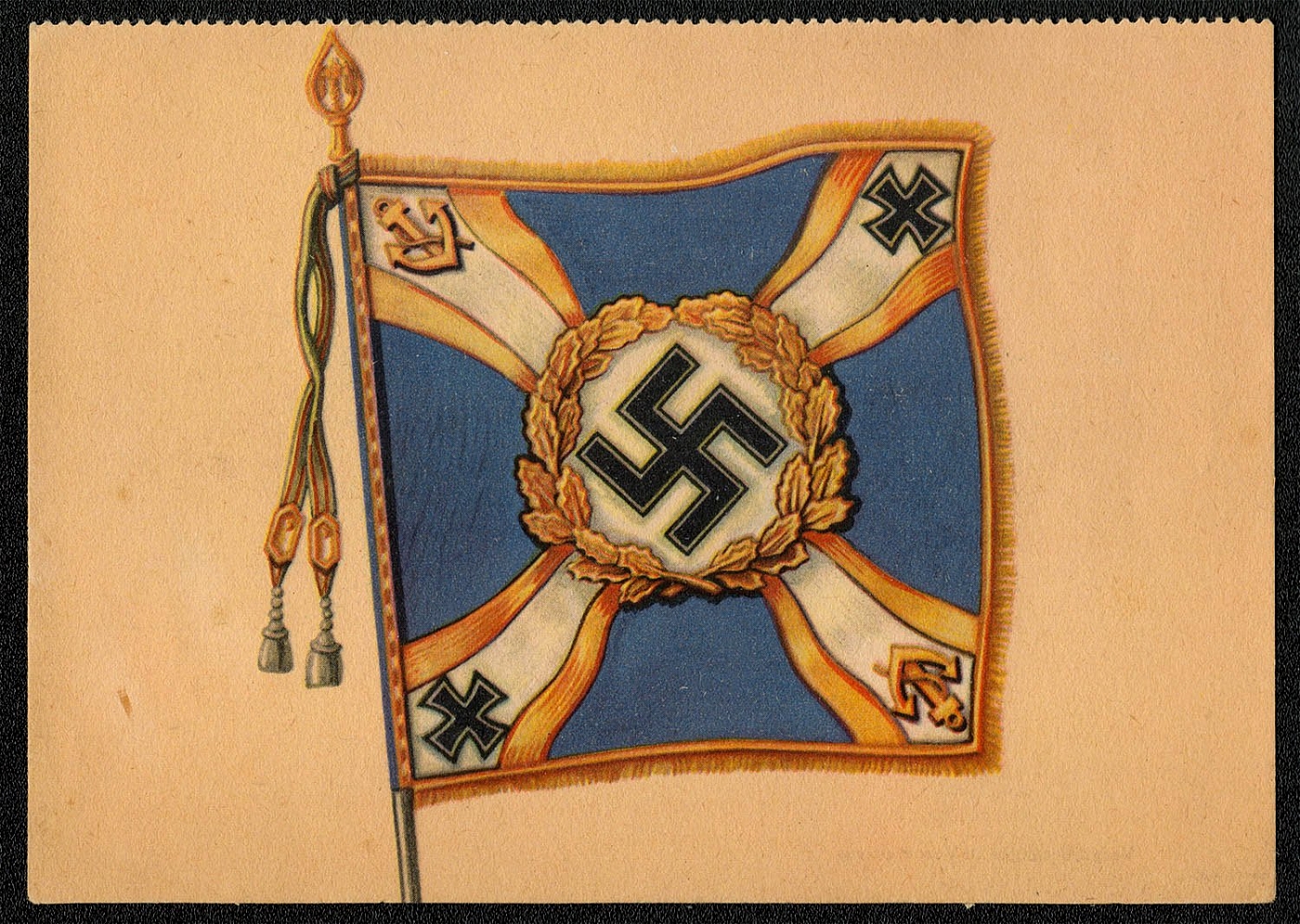
255
$65
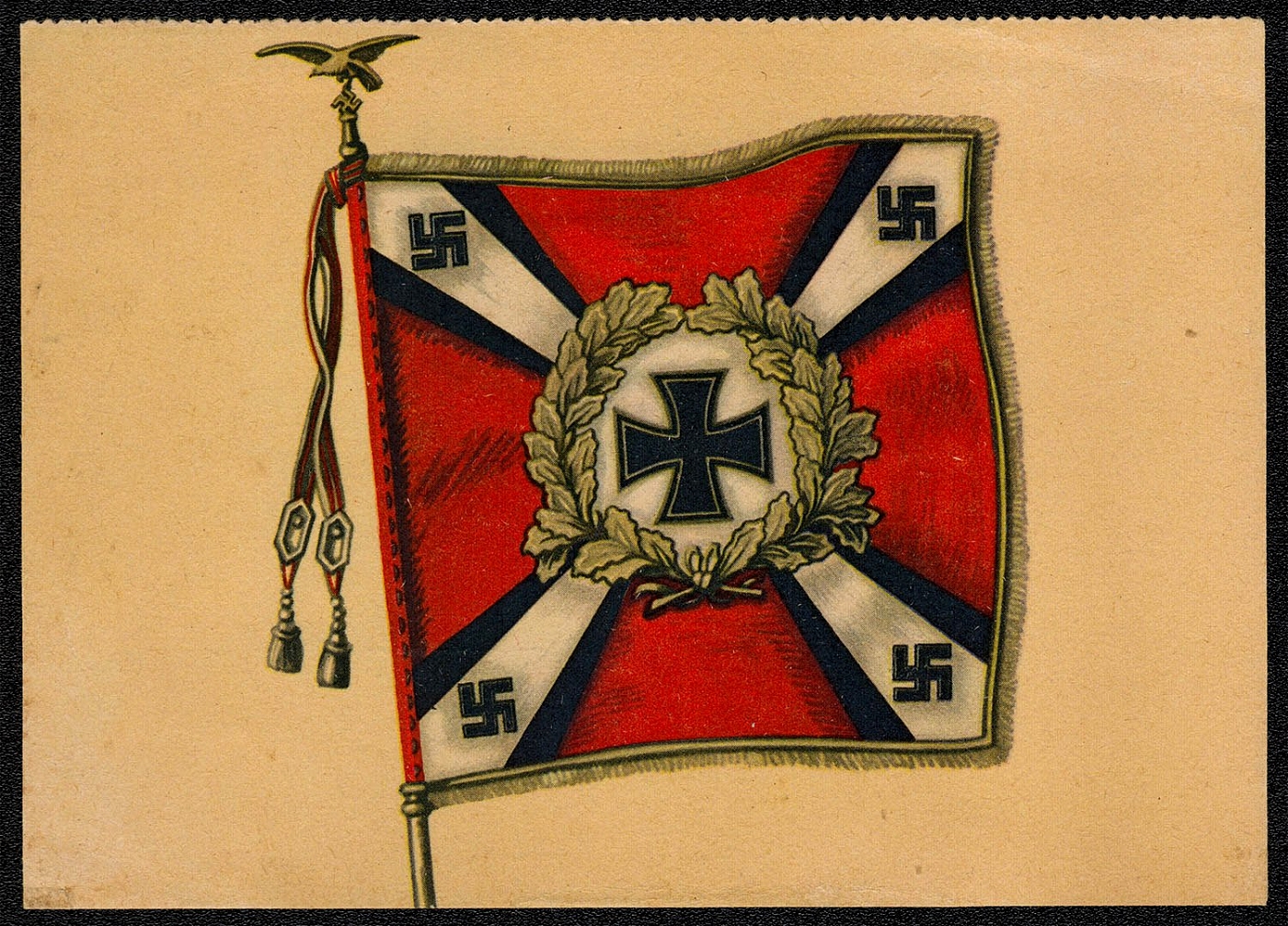
256
-
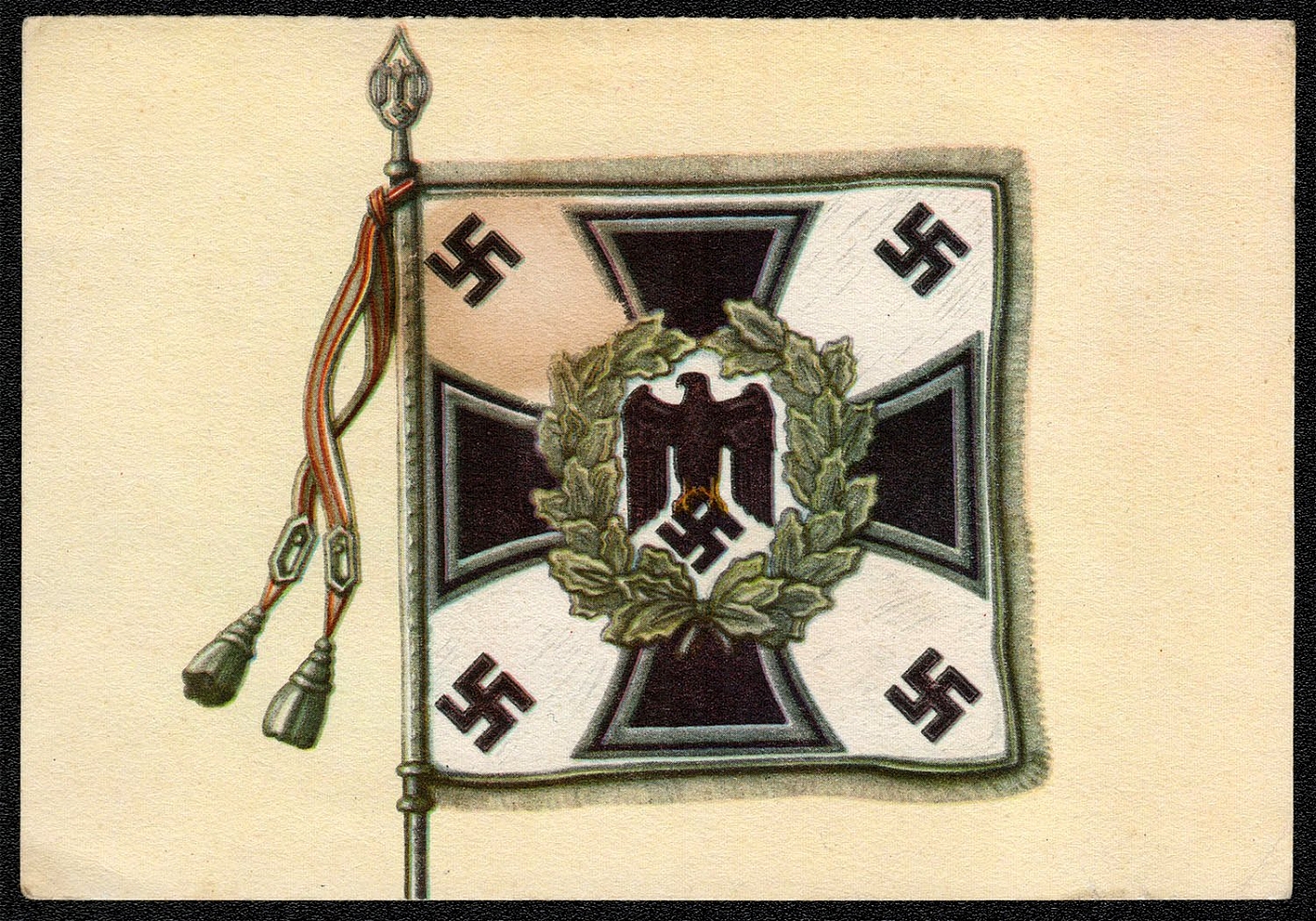
257
$50
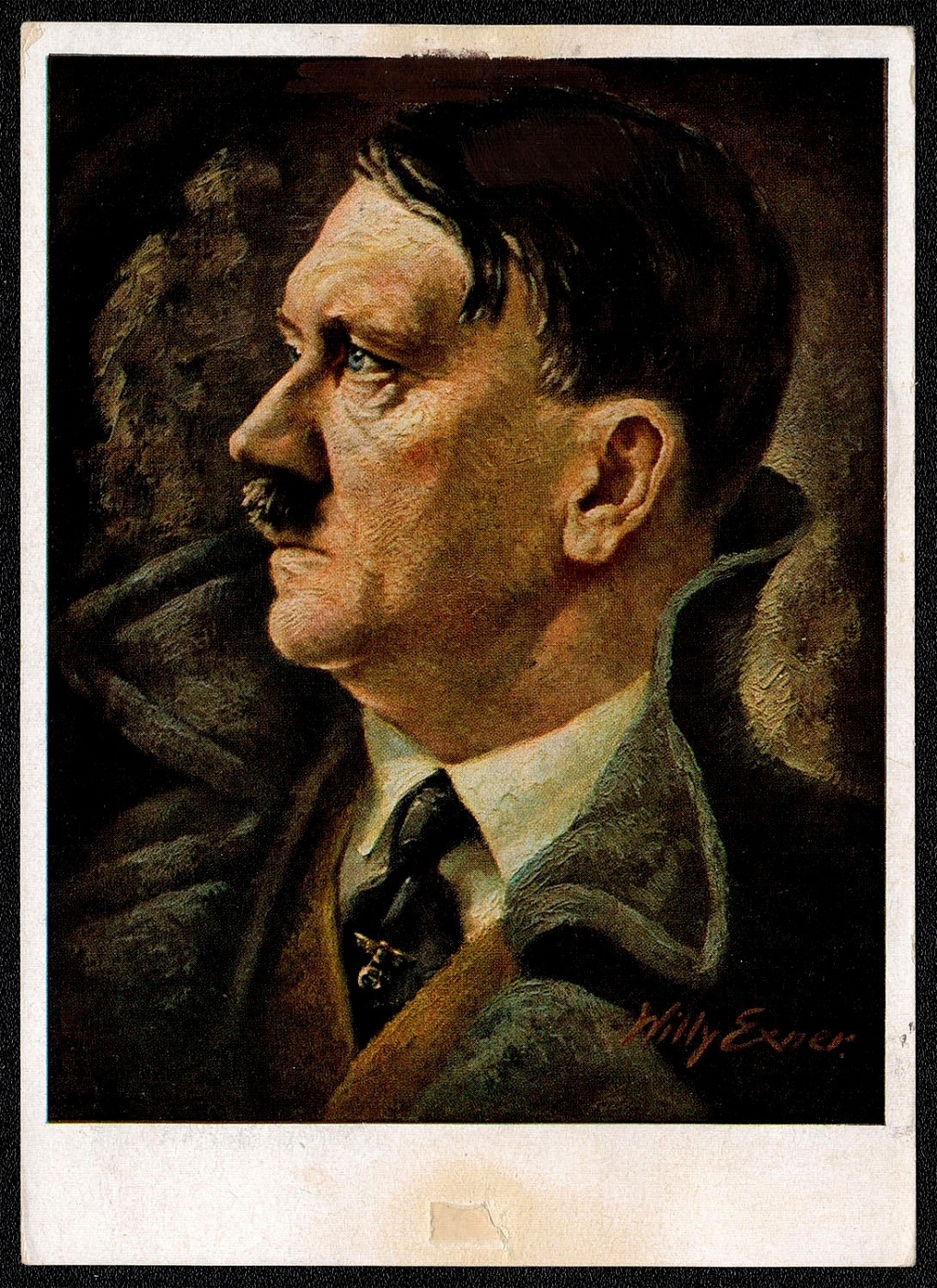
1943 Adolf Hitler, Bohemia and Moravia stamps used in General Government
Hoffmann post card No. 442b philatelically prepared, but postally used 16 June 1943 in Hohensalza. Hohensalza was the German name for a commune formerly known as Inowrazlaw in north central Poland. The most notable aspect of this card, therefore, is that stamps of the Deutsches Reich (B216) and Bohemia and Moravia (Sc В18-19) were used to pay the postage, not those of the Generalgouvemement. The publicity cancel depicts a health resort, and the slogan: Sun and Moon Baths Nerves - Rheumatism - Respiratory Illness -Gynecological Disorders.
Sold for:
$50
258
$16
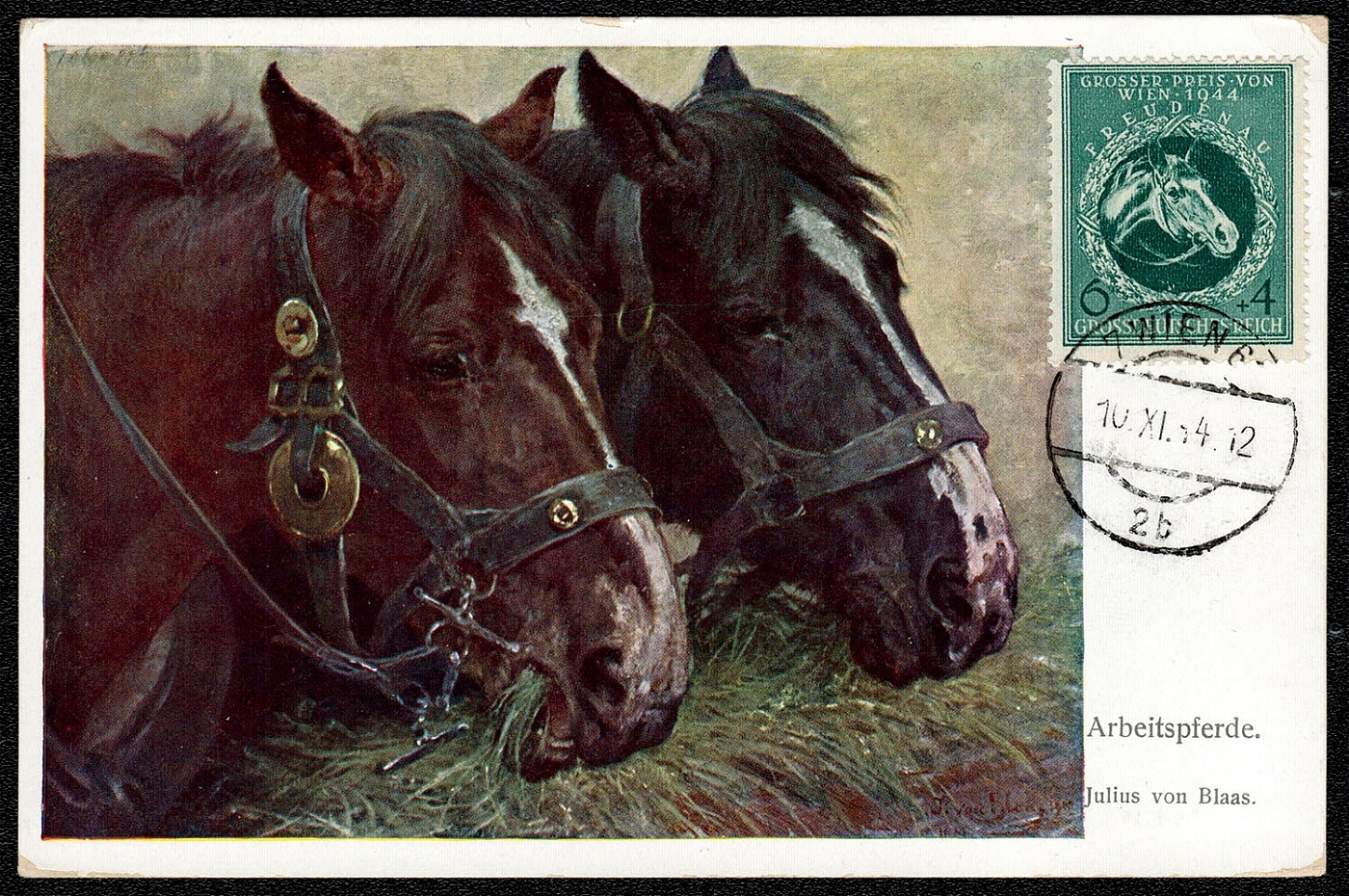
1944 Grand Prize of Wien Race (Workhorse)
Souvenir card (Wiener Kunst, Nr. 1118) designed by Julius von Blaas and franked with Sc B284. The favor cancel was applied in Wien, 10 November 1944.
Sold for:
$16
259
$16
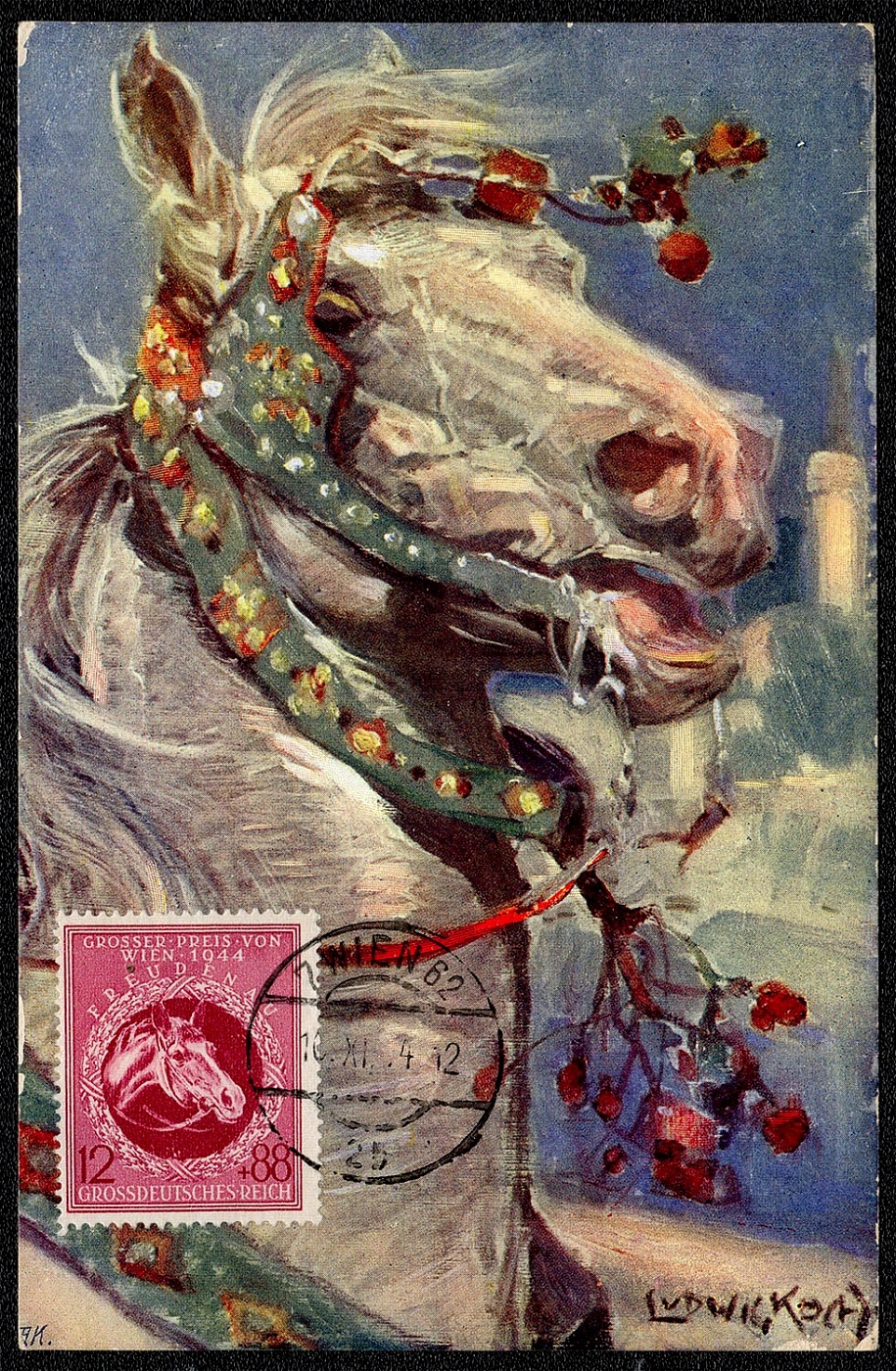
1944 Grand Prize of Wien Race
Souvenir card (B.K.W.I. 966-2) franked with Sc B285. The favor cancel was applied in Wien, 10 November 1944.
Sold for:
$16
260
$110

1933 Reich party rally of the NSDAP in Nuremberg, Enlargement of the uncatalogued “RDPJH” label on the post card.
An official NSDAP souvenir post card franked with Sc 465 postally used 31 August 1933 with a “3 star” slogan cancellation. It was mailed from Postamt Nurnberg 2. The card was designed by Siegmar von Suchodolski. Brend’amour, Simhart & Company of Munich did the copper engraved printing. Copyrighted by Franz Eher Verlag of Munich “The 1933 Rally had its official beginning with the arrival of Hitler shortly before 8:00 PM on 31 August. He had come from Munich with his cabinet and was cheered by the waiting crowd as he was driven to the hotel Deutscher Hof. Later in the evening, the city officials cordially greeted Hitler and the leaders of the Party at the Nurnberg Town Hall. Mayor Liebel delivered a welcoming address and presented Hitler with Diirer’s engraving “Knight, Death, and the Devil” - a fitting gift, since to the Romantics it represented Germanic knightly prowess in the face of adversity and death. Hitler briefly answered the mayor’s speech and was driven back to the hotel.”
Sold for:
$110
261
$45
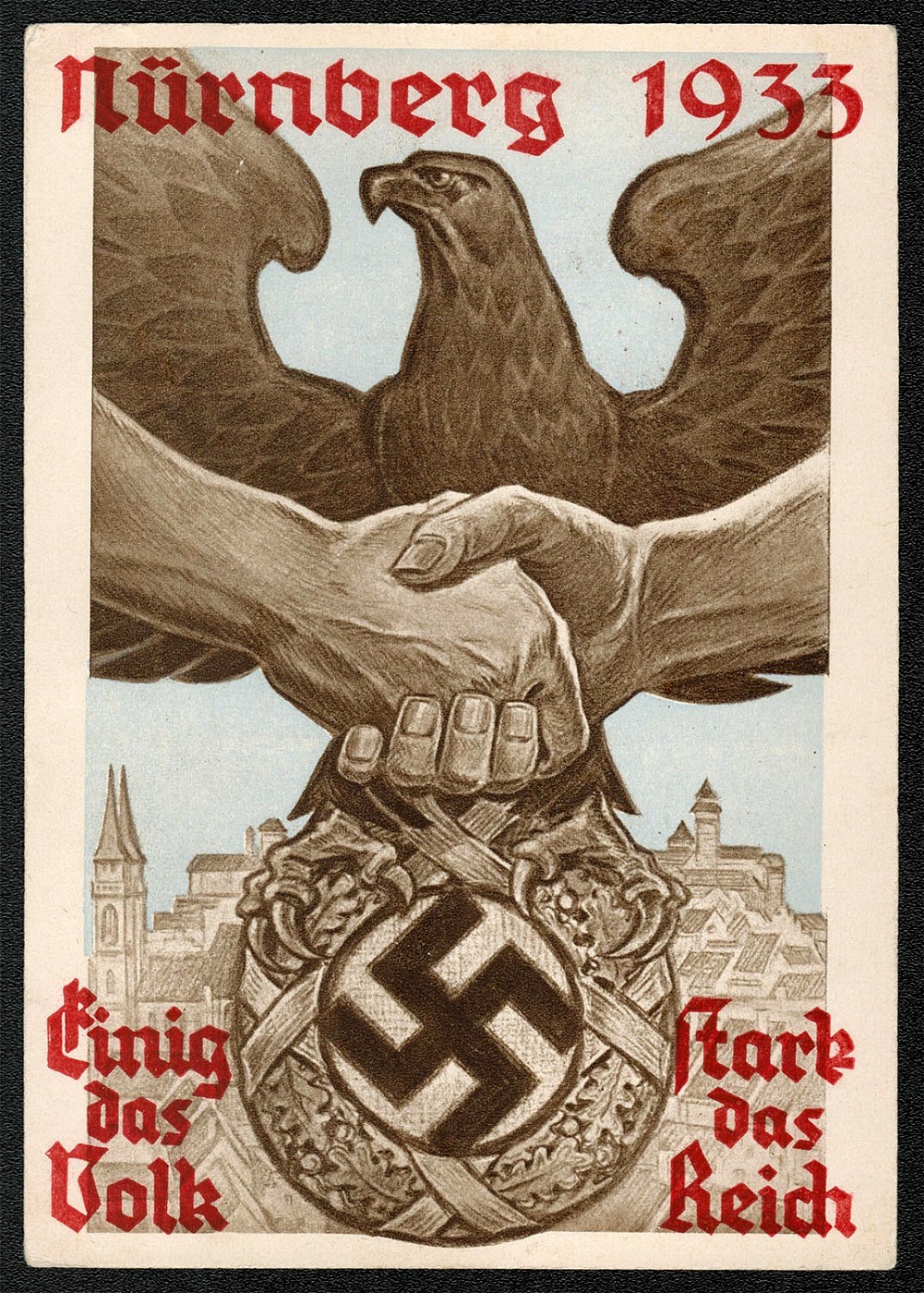
1933 Reich party rally of the NSDAP in Nuremberg, A United People Is A Strong Empire
The Party was celebrating its accession to absolute political power when special trains brought 750,000 of the faithful to the main railway station in the last week of August. Some 253,000 dispersed to their billets in hotels, public buildings and private homes in the city, and the remainder marched off to seven huge tented camps set up to accommodate them in areas in or close to the Rally grounds. The new regime had not yet seized the opportunities provided by the postal administration to exploit the propaganda potential of the first truly “National” Rally and no commemorative stamps were issued for the occasion. Many souvenir items were sold in Nurnberg, but the most popular were the Parteitagspostkarten or Rally Postal Cards. Some were issued on behalf of the NSDAP. The above is one of two official NSDAP cards issued by the Party’s primary publisher, Franz Eher Verlag and the copper engraving was done by Brend’amour, Simhart & Company, both of Munich
Sold for:
$45
262
$110

1933 Reich party rally of the NSDAP in Nuremberg, A United People Is A Strong Empire, Used
2 September 1933, Nurnberg 22 mm single circle with two stars.
Sold for:
$110
263
$45
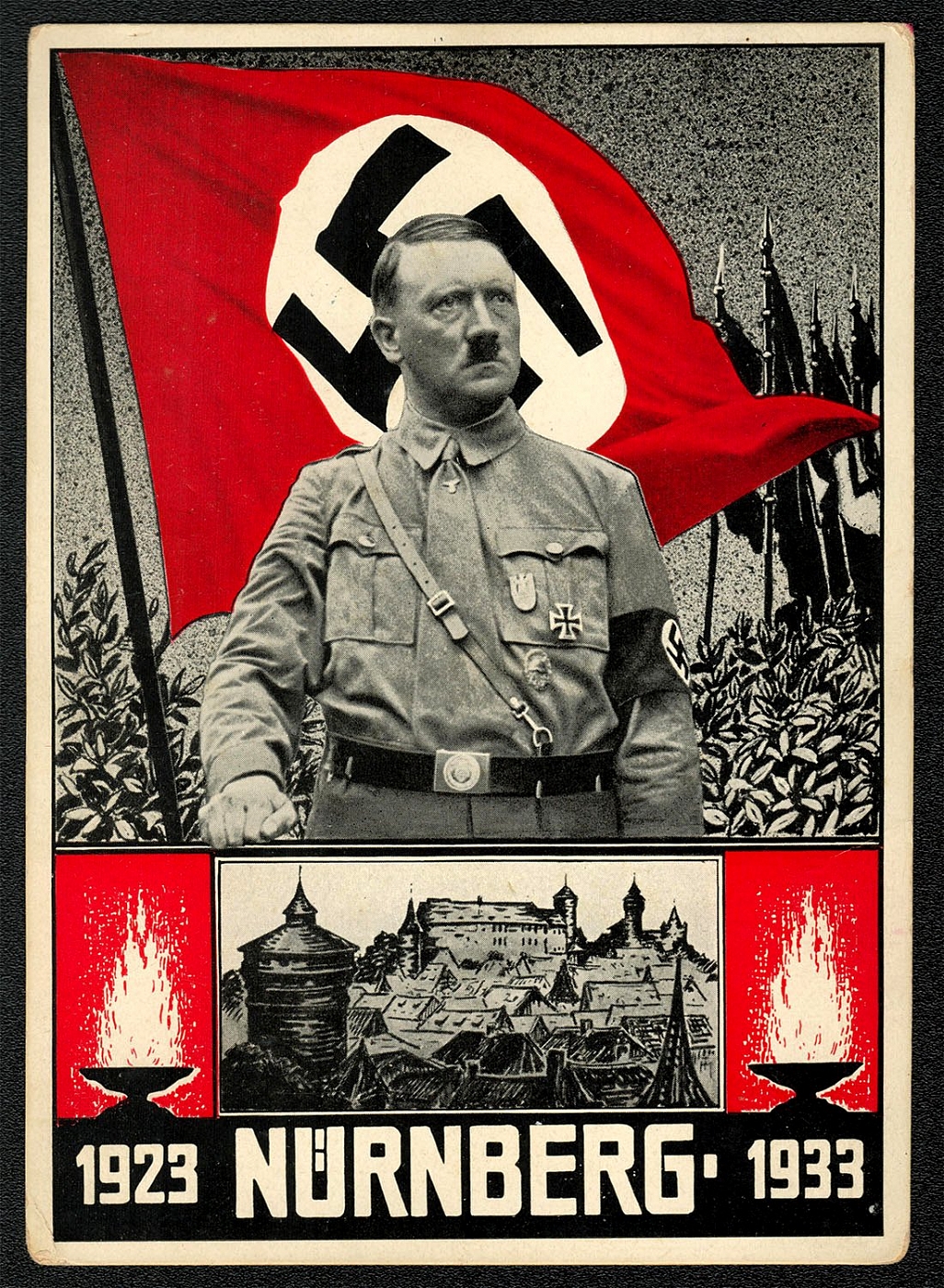
1933 Reich party rally of the NSDAP in Nuremberg, Adolf Hitler
One of six known true Rally cards Heinrich Hoffmann, Hitler’s personal photographer, published in 1933. The inscription “1923-1933” above, and on the message side of the card commemorates the tenth anniversary of Deutschen Tag in 1923. Festival Card No. 410 franked with Scott 403 mailed from Postamt Niimberg 2 on 2 September 1933 with the “3 star” date stamp which is always to the right of the slogan. Photo - Hoffmann, Munich, Amalienstr. 25 — Nachdruck verboten. (Photo by Hoffmann, 25 Amalien St., Munich - all rights reversed.) The district leaders of the party assembled on the Zeppelinwiese in the morning of 2 September. A huge review of 160,000 officials and their followers stood in rows, divided by one wide middle avenue, with three narrow lanes on each side. In an impressive demonstration of mass movement, waves of flag bearers came over the embankment in the rear of the field. they swept through the blocks of men standing at attention, marching twelve abreast with their banners high through the center avenue, and in single file through the narrow lanes. Hitler was greeted by his uniformed followers in the parade ground and by 100,000 spectators in the stands with cheers that reverberated throughout the arena. In his speech, he congratulated the district leaders and the party as a whole upon their spectacular political victory and promised National Socialist supremacy in Germany for a thousand years to come.
Sold for:
$45
264
$95
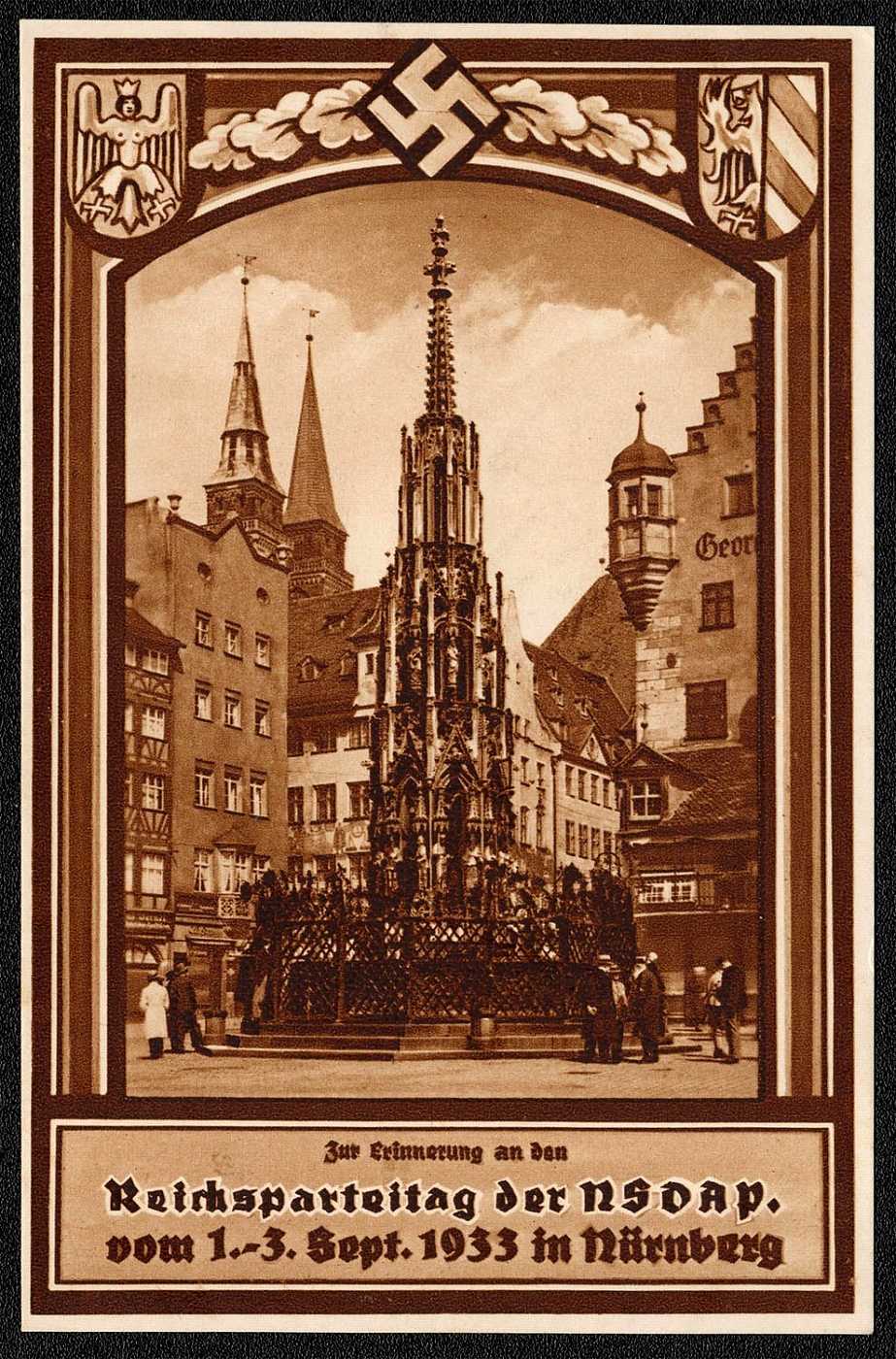
1933 Reich party rally of the NSDAP in Nuremberg, Adolf Hitler Plaza
(In Remembrance of the Reichs Party Rally of the NSDAP. from 1-3 Sept. 1933 in Niirnberg) One of five different view cards of Niirnberg’s Altstadt published by Verlag von Wilhelm Serz in 1933. The above (Adolf-Hitler-Platz mit Schbnem Brunnen) depicts Adolf Hitler Plaza with its Beautiful Fountain.
Sold for:
$95
265
$30
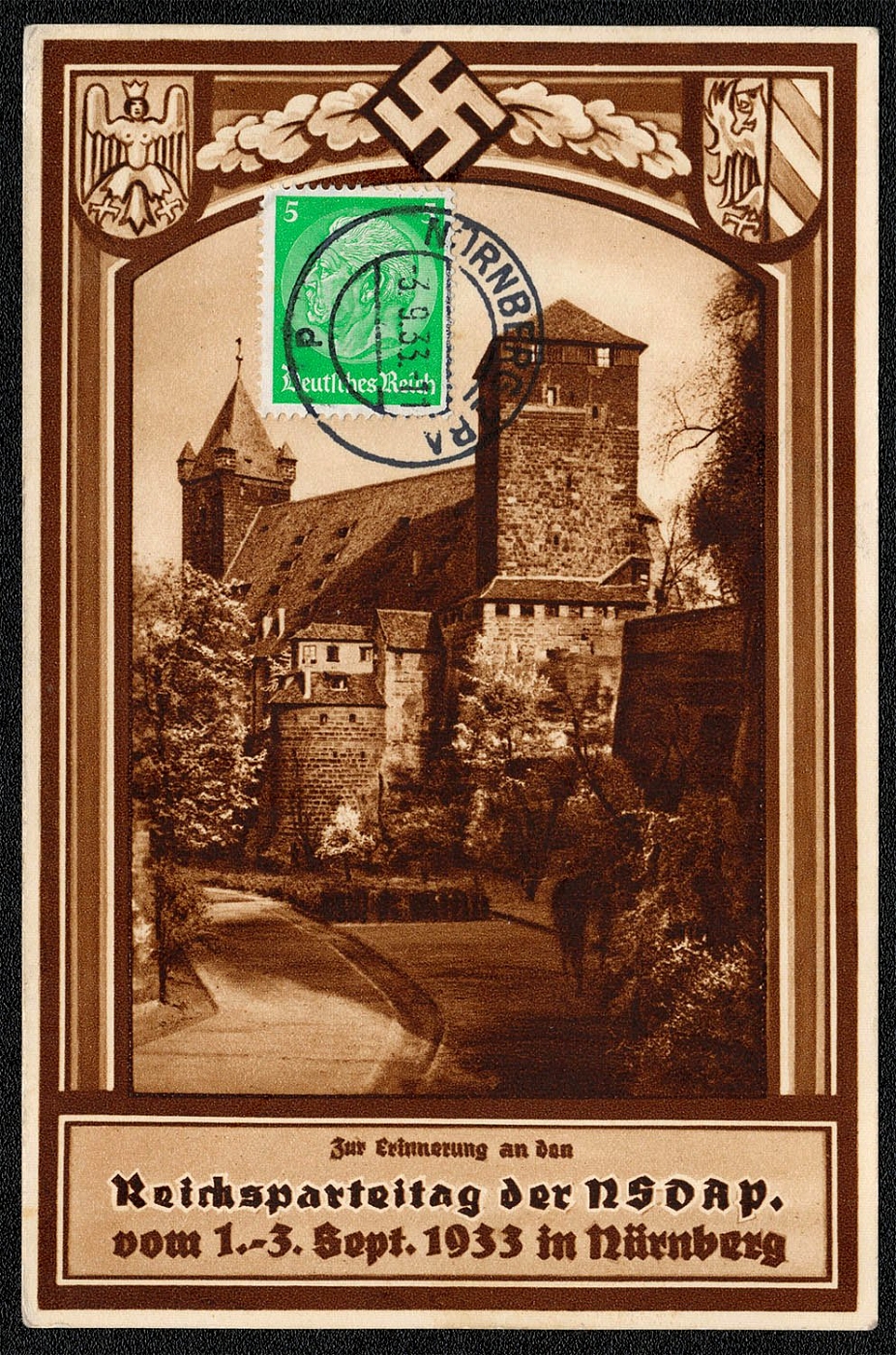
1933 Reich party rally of the NSDAP in Nuremberg, Imperial stables
(In Remembrance of the Reichs Party Rally of the NSDAP. from 1-3 Sept. 1933 in Niirnberg) Kaiserstallung view card published by Verlag von Wilhelm Serz, Nurnberg franked with Sc 403 and posted 3 September 1933. The double circle “Nurnberg d” cancel is not mentioned in Die Postgeschichte der Nurnberger Reichsparteitage, so it is assumed that it was the standard Niirnberg cancel used in 1933.
Sold for:
$30
266
$40
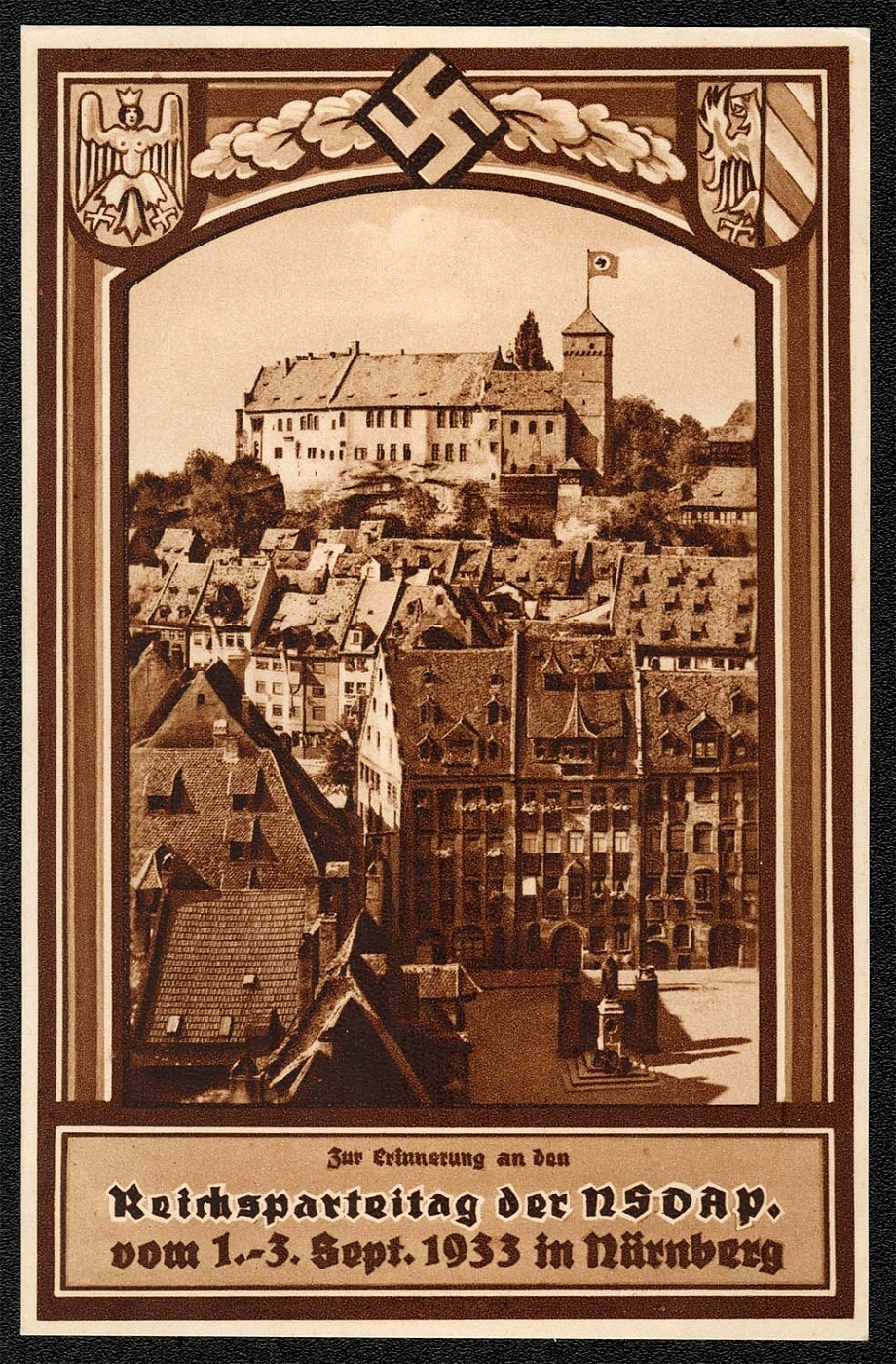
1933 Reich party rally of the NSDAP in Nuremberg, View of the castle
(In Remembrance of the Reichs Party Rally of the NSDAP. from 1-3 Sept. 1933 in Nurnberg) One of five view cards depicting views of Nurnberg’s Altstadt published by Verlag von Wilhelm Serz in 1933. The above (Blick auf die Burg) presents a view of the castle.
Sold for:
$40
267
$40
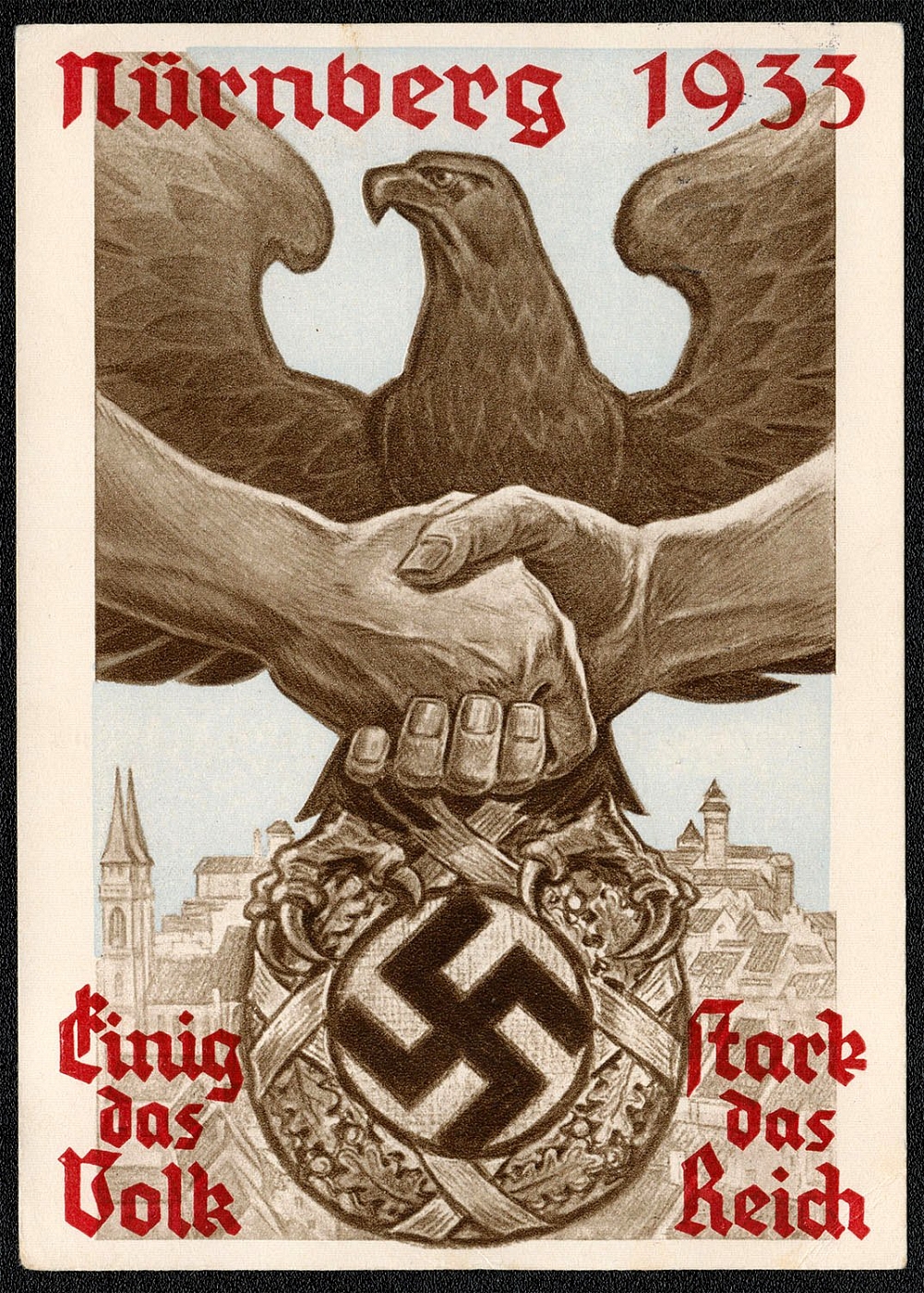
1933 Reich party rally of the NSDAP in Nuremberg, A United People Is A Strong Empire, Used
The obverse of this card is the previously exhibited (A United People Is A Strong Empire) Brend’amour, Simhart & Company of Miinchen did the copper engraved printing on this NSDAP souvenir post card copyrighted by Franz Eher Verlag of Munich, Zentralverlag der NSDAP. Posted 4 September 1933 Nurnberg 2 (22 mm single circle with three stars, one of five varieties.) Although the card was written and addressed on 3 September, the last day of the Rally, it was postmarked on 4 September in Postamt Nurnberg 2 which was still using the slogan cancel even though the festivities were officially over.
Sold for:
$40
268
-
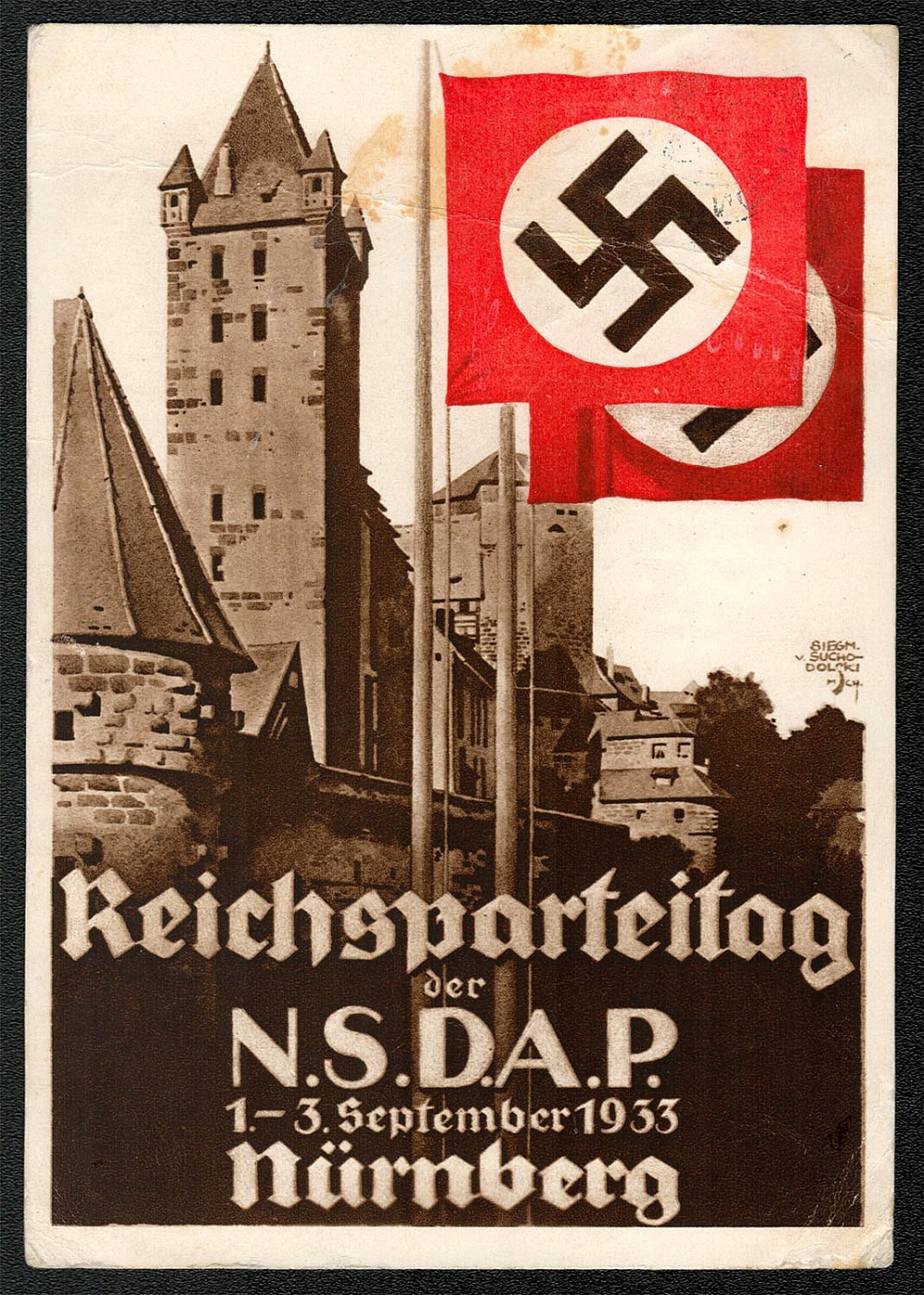
1933 Reich party rally of the NSDAP in Nuremberg, Used
Siegmar von Suchodolski was the designer of this official NSDAP souvenir post card posted in Nurnberg on 3 September 1933. Brend’amour, Simhart & Company of Munich did the copper engraved printing, and the card was copyrighted by Franz Eher Verlag of Munich At dawn on the last morning of the rally, members of the SA gathered for their final demonstration. Many of the groups met at their rendezvous as early as 3:00 AM. Shortly before 8:00 AM, the parade began to move toward the Luitpold Arena for the roll call and the traditional consecration of the banners. The ceremonial atmosphere reached its climax when, at 8:00 AM, all the church bells of Nurnberg began to ring. By 10:00 AM, when Hitler arrived, the formations had assumed their positions. In the center of the field were 15,000 party flags. they seemed to dwarf the thirty-five flags of the visiting nations. Attendance was estimated at 150,000. Two different publicity cancellations were installed in machines in three of the city’s post offices. The “3 star” cancellation on this official NSDAP souvenir card mailed 3 September 1933 was applied in Niirnberg 2, the main Postamt at 4-6 Bahnhofstrasse. Later in the afternoon, the scene shifted to the town square for the march past. Reviewing stands had been erected to accommodate 10,000 spectators. A special section was reserved for the 100 oldest party members and the families of the 240 men who had been killed in the struggle for power. Standing in his car, Hitler reviewed the parade. Beside him was Ernst Rohm, the chief of staff of the SA. Three bands took turns accompanying the marchers. the houses surrounding the square were decorated with flowers and garlands, and spectators filled every window. Two hours later, Hitler closed the rally with a speech in which he once again expounded his theory of racial leadership.
Unsold
269
-
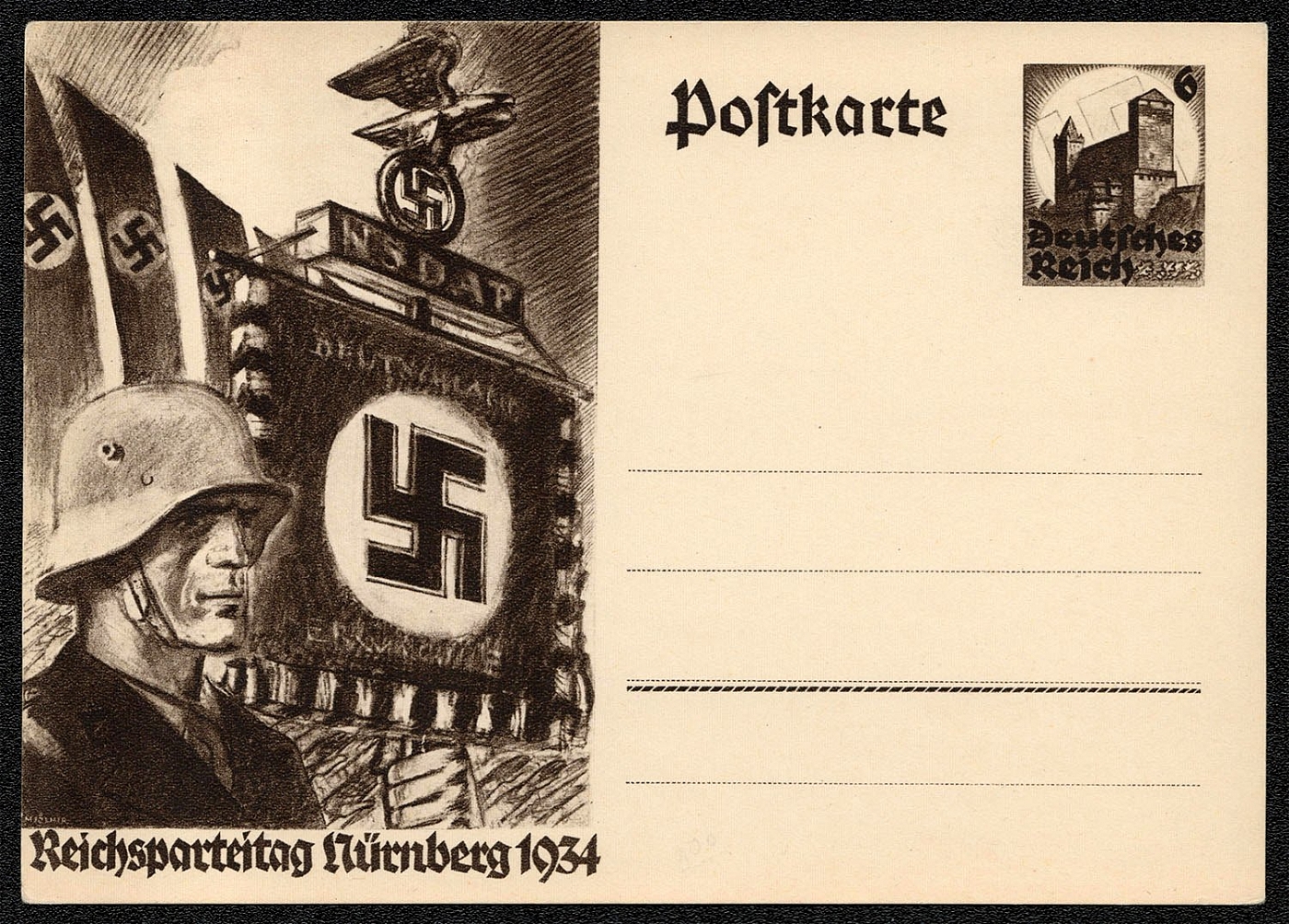
1934 Reich party rally of the NSDAP in Nuremberg SS Man with Standard
"The official postal stationery card (Michel P 252) was also issued 1 September 1934. The cachet, and the imprinted stamp and postage stamps in an almost identical design (depicting the rising sun of the National Socialism and the ancient castle of Nurnberg) was the first success in this medium for Hans Albert Schweitzer. The thirty three year old artist was rapidly making a name as a political artist under his professional pseudonym ""Mjolnir"" (the name of the legendary hammer of Thor)."
Unsold
270
-
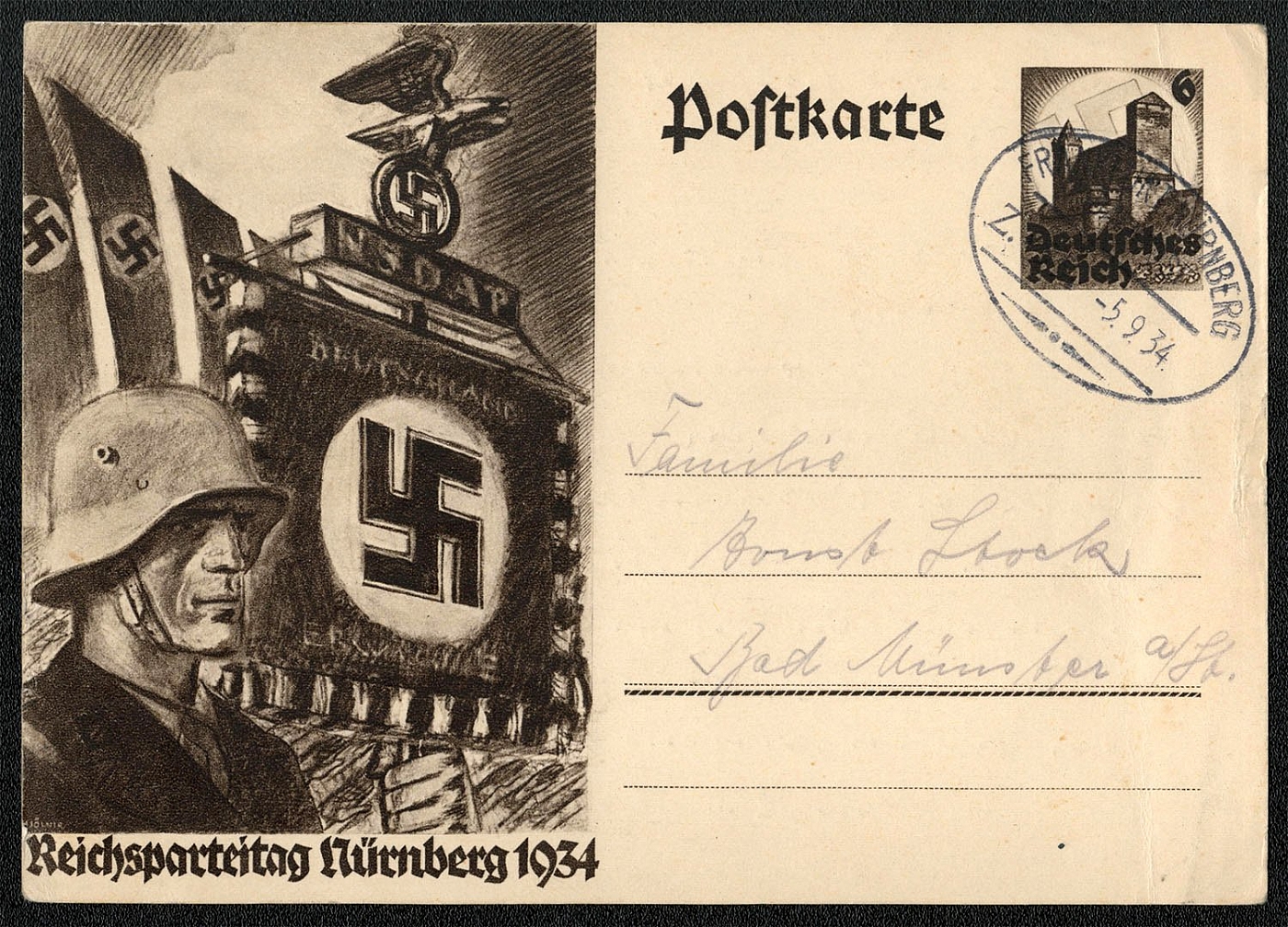
1934 Reich party rally of the NSDAP in Nuremberg SS Man with Standard, Frankfurt-Nurnberg railroad handstamp
Michel P 252 postally used with a Frankfurt-Nurnberg Eisenbahnhandstempel (railroad handstamp) dated 5 September 1934. Over two hundred special trains were requisitioned to bring as many as 400,000 party members to the Rally in the early years. Apparently this card was written in Furth, then posted aboard the Frankfurt-Nurnberg train as it arrived for the opening day of the Congress.
Unsold
271
-
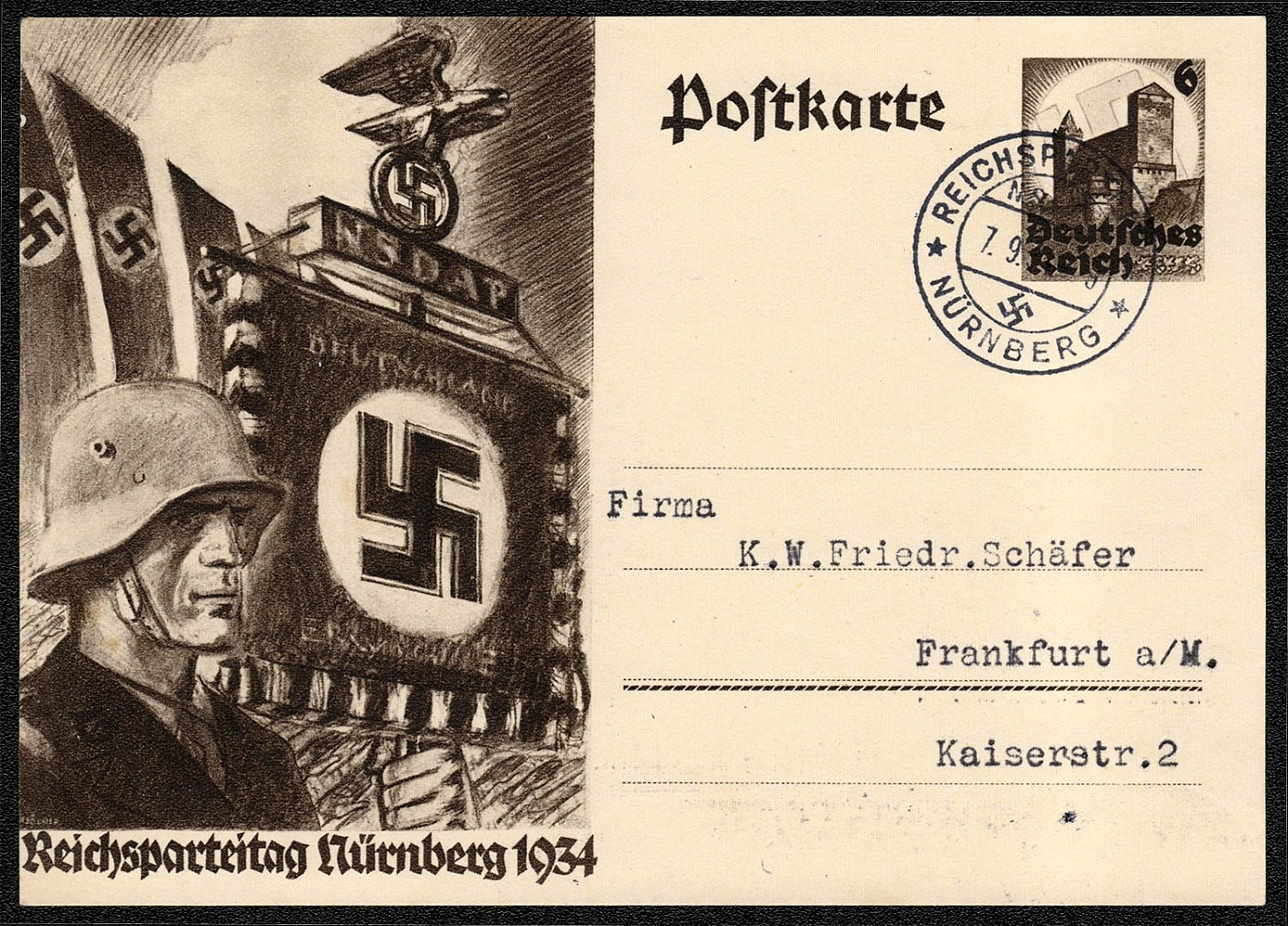
1934 Reich party rally of the NSDAP in Nuremberg SS Man with Standard, Special Commemorative Handstamp
Michel P 252 postally used with Sonderhandstempel (special commemorative handstamp) dated 7 September 1934. This special handstamp was probably used at a philatelic counter in one or more Nurnberg post offices and applied on request. They were in use from 29 August to 10 September and therefore were not confined to mail posted only during Rally week. Over 3,000,000 items received this cancellation.
Unsold
272
-
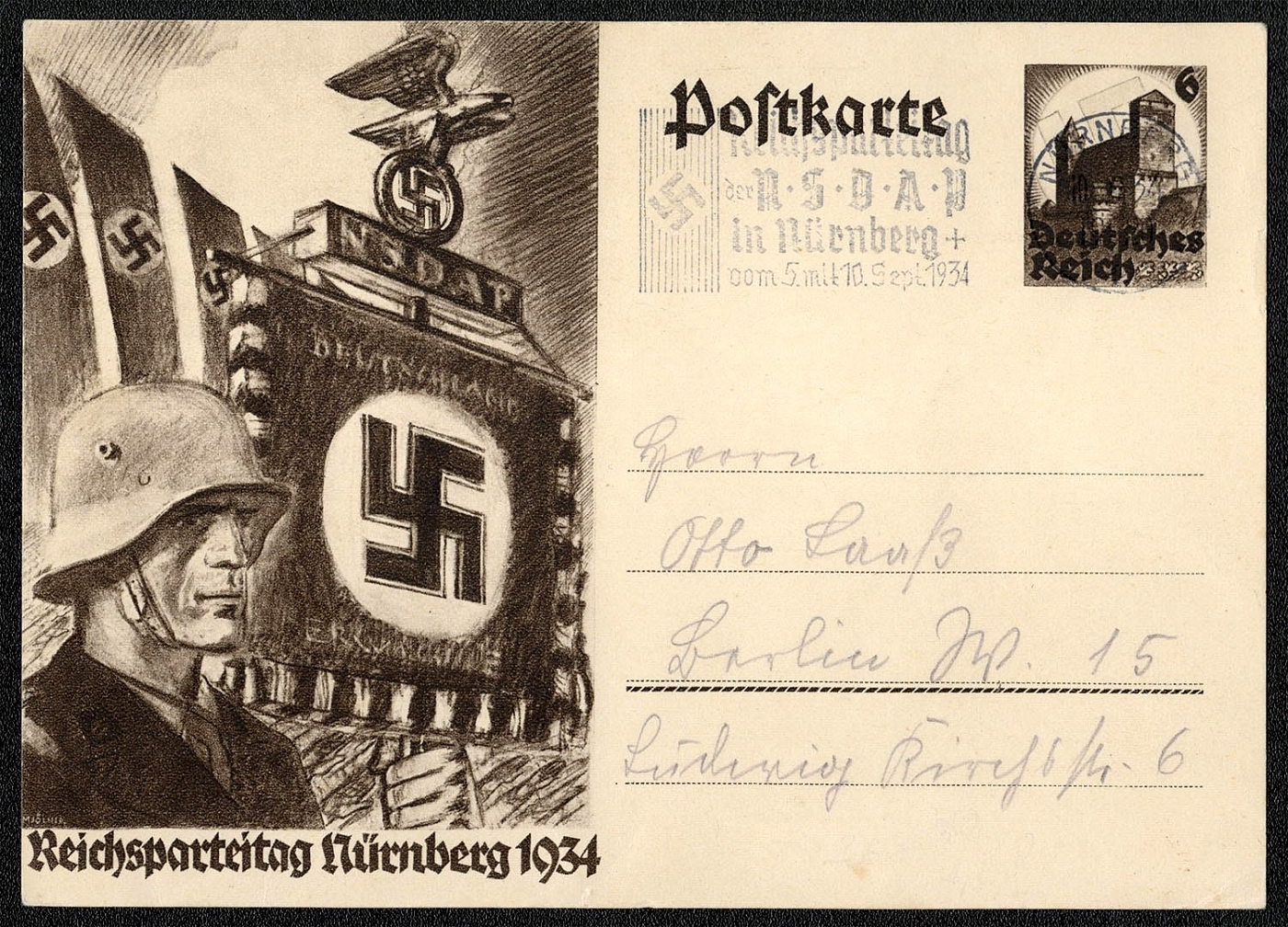
1934 Reich party rally of the NSDAP in Nuremberg SS Man with Standard, Special machine cancel
Michel P 252 postally used with the Postamt Nurnberg 2 two star machine cancel. Unfortunately, the cancel fell on the imprinted stamp and which of the “2” varieties were used cannot be determined. The card is dated 10 September 1934.
Unsold
273
-
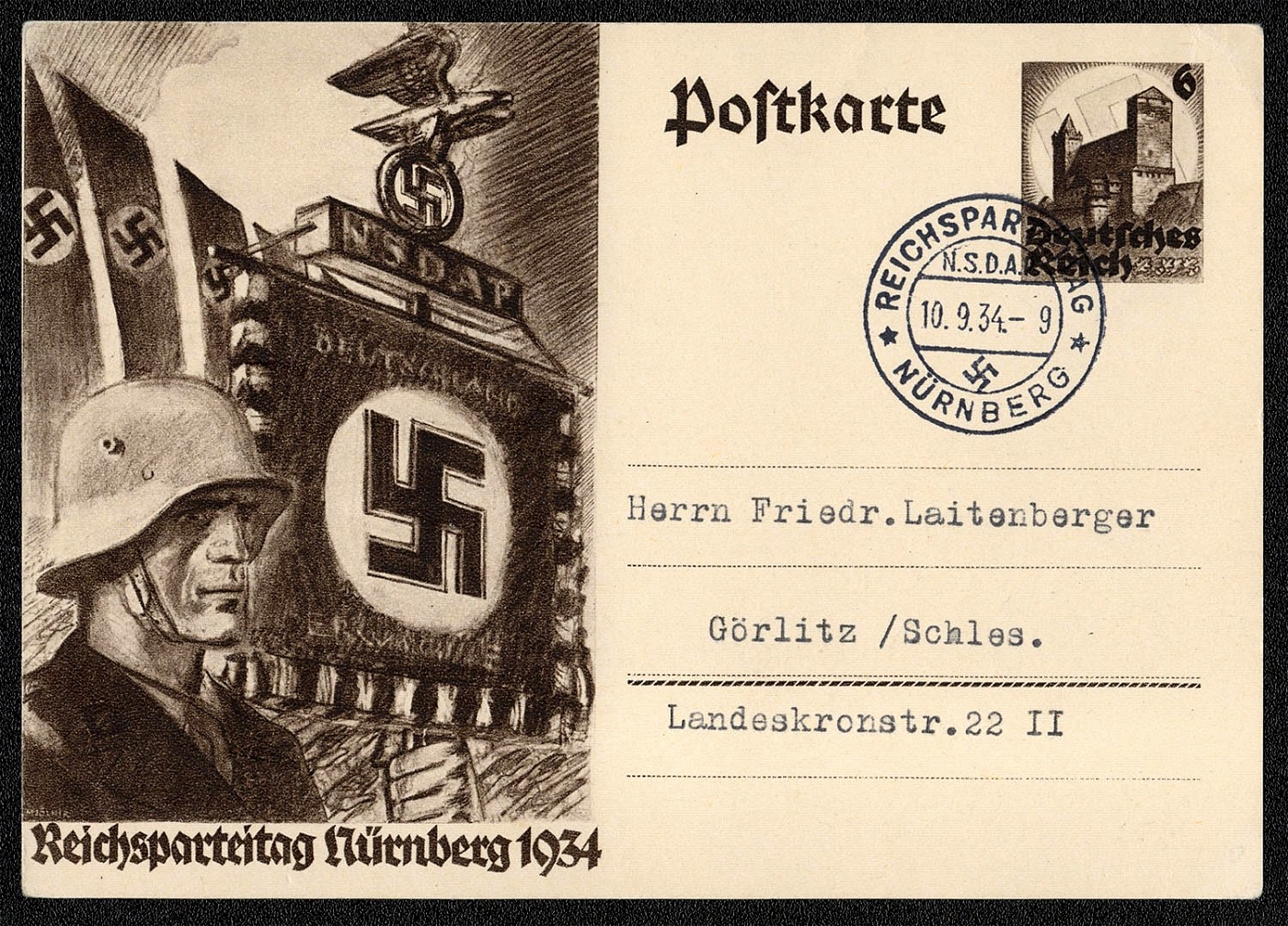
1934 Reich party rally of the NSDAP in Nuremberg SS Man with Standard, Special Commemorative Handstamp
Michel P 252 postally used with Sonderhandstempel (special commemorative handstamp) dated 10 September 1934. This special handstamp was probably used at a philatelic counter in one or more Nurnberg post offices and applied on request. They were in use from 29 August to 10 September and therefore were not confined to mail posted only during Rally week. Over 3,000,000 items received this cancellation.
Unsold
274
-
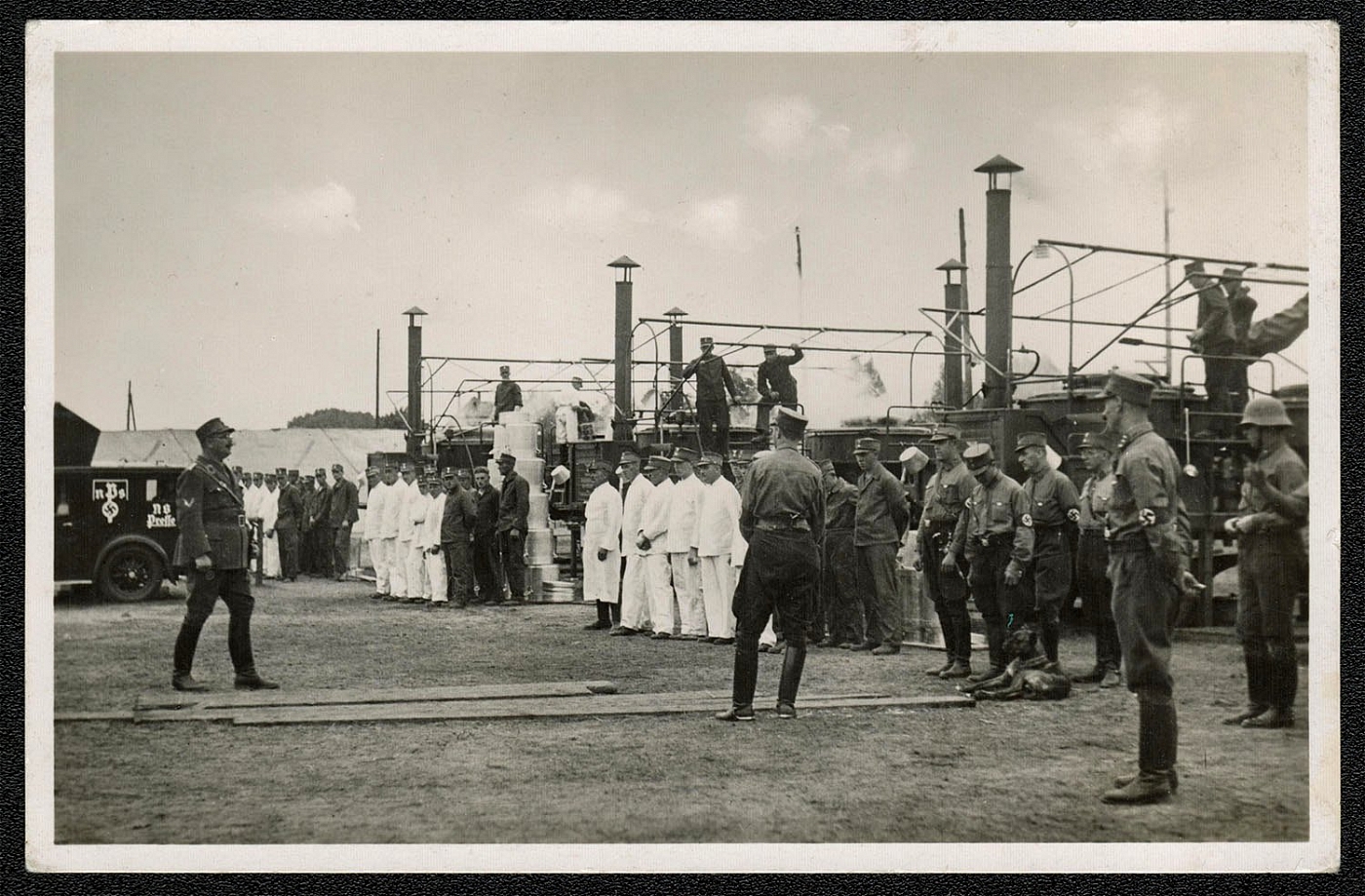
1934 Reich party rally of the NSDAP, The great mobile field kitchen
(The great mobile field kitchen of the Gaues Wurtemberg-Hohenzollern with operating crew in Furth the Camping City.) Published by G. Sattler, Buchdruckerei, Stammheim b. Calw. Presumably, the photo used on this card was taken at the 1933 Rally.
Unsold
275
$35
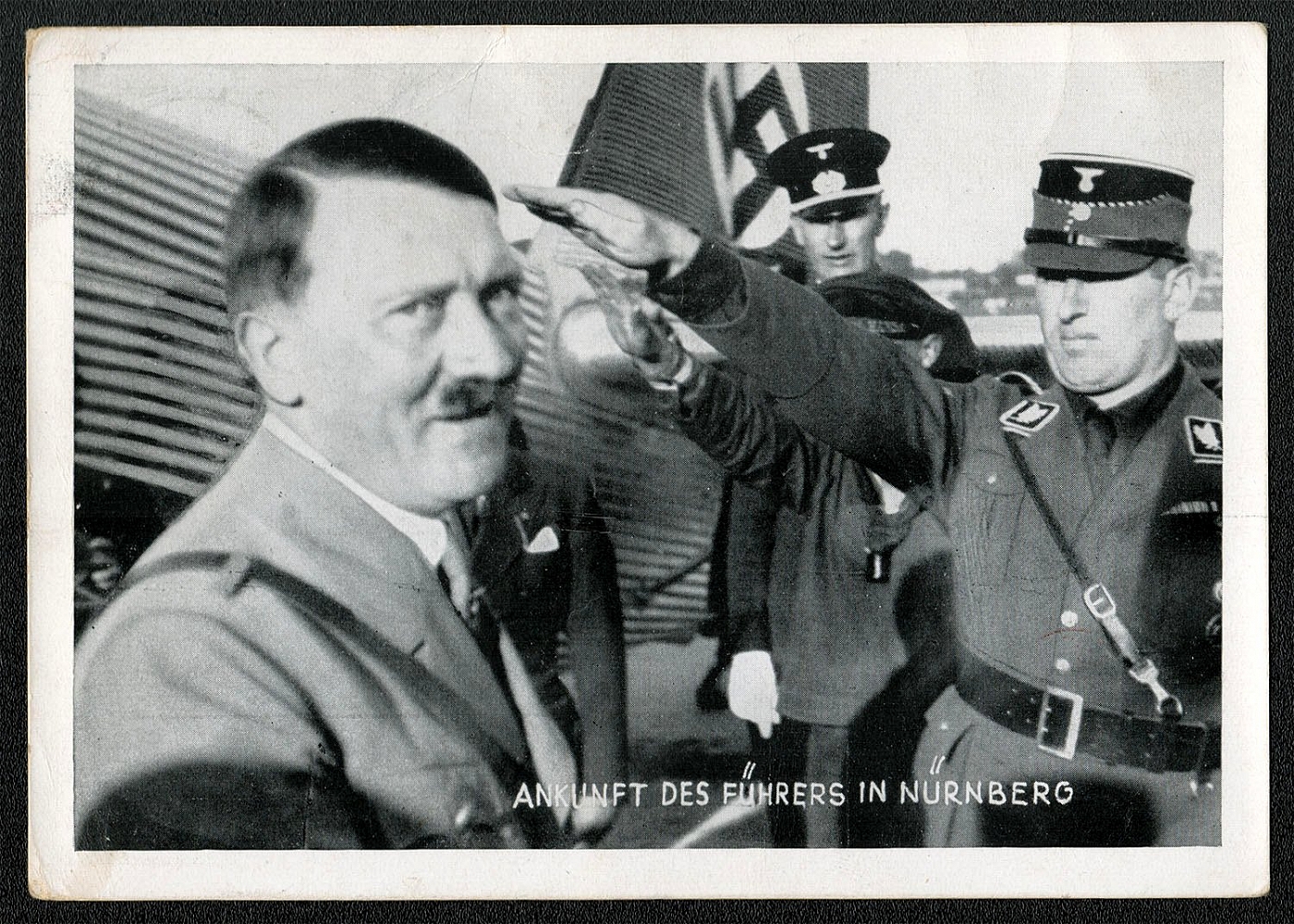
1934 Reich party rally of the NSDAP in Nuremberg, The Fuhrer’s Arrival in Nurnberg
Published in 1934 by Stiirmer Verlag, Nurnberg, Julius Streicher’s own publishing house, and the publisher of Der Stiirmer, the anti-Semitic and pornographic newspaper of the National Socialist militant press. It was founded in the early 1920s. Reichsparteitag post card franked with Scott 442 mailed 8 September 1934 from Postamt Nurnberg 1. A “true” Rally card published by Julius Streicher’s Sturmer Verlag, it is not listed in Rawlings and Passmore’s Postal History of the Nurnberg Rallies. The inscription Reichsparteitag 1934 and the red circular Rally badge is similar to that used on the 1934 F. Willmy Verlag cards. § The special commemorative postage stamps, official postal stationery and cancellations used this year indicate the Reichspost was now fully aware of the enormous propaganda potential of the forthcoming Rally. A newly designed slogan cancellation advertising the Rally made its appearance in five automatic canceling machines in the main Nurnberg post offices in the weeks before it began. The design features a large swastika banner reminiscent of the huge flags displayed in the Luitpold Arena at the Rally grounds. Machines using the new slogan were installed in three Niirnberg post offices. The cancellation on the card above with its central date bridge and small letter “u” in the center of the lower right circle was used in Postamt Nurnberg 1.
Sold for:
$35
276
-
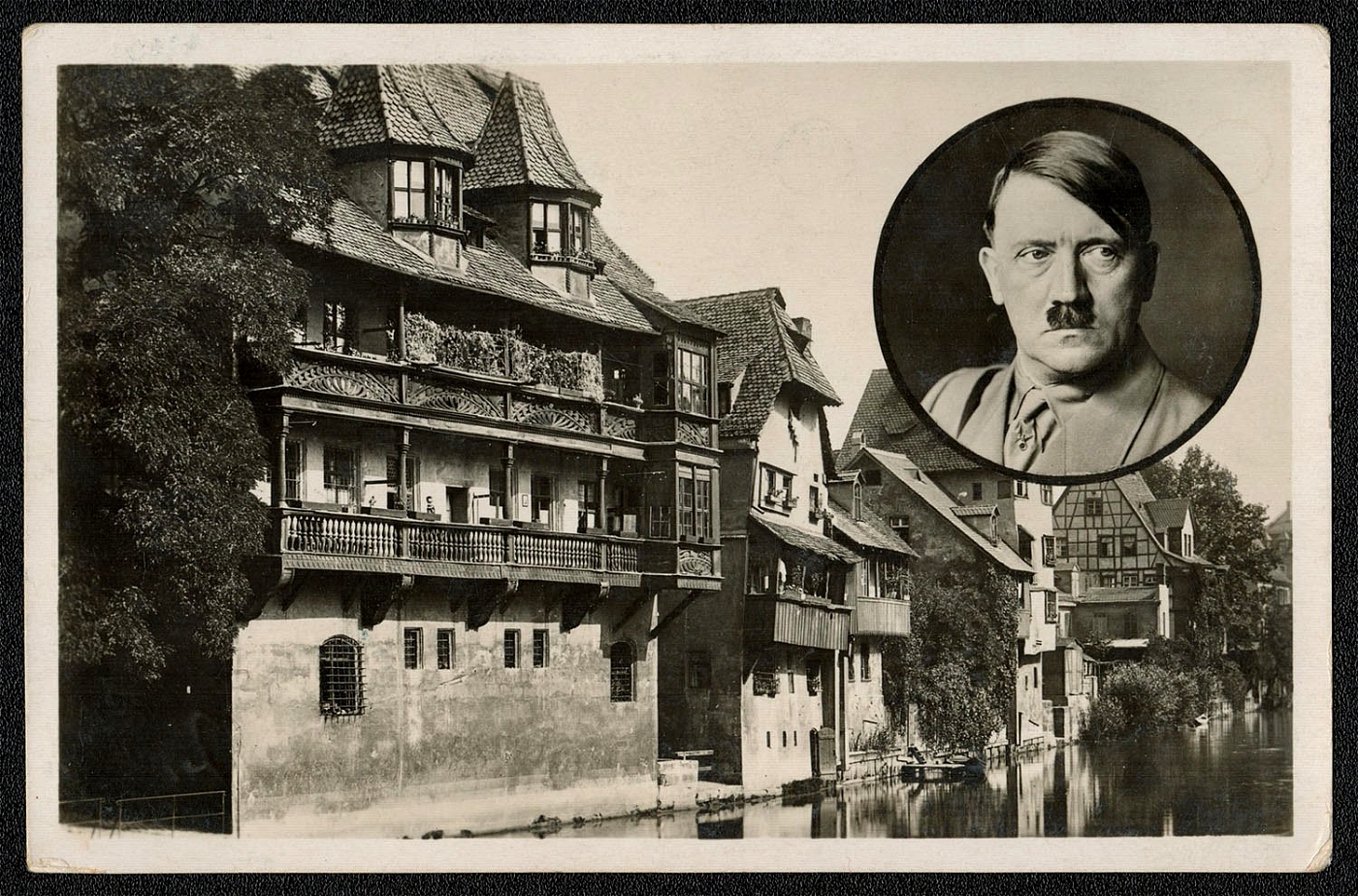
1934 Reich party rally of the NSDAP in Nuremberg, Fest-Postcard depicts old houses along the Pegnitz River
The Pegnitz, 53 miles long, flows south and west through Nurnberg to unite with the Rednitz at Fiirth to form the Regnitz River. Hoffmann Parteitag post card franked with Scott Nos. 442 mailed 9 September 1934 from Postamt Nurnberg 2. Type “b” cancellation. This Heinrich Hoffmann “view card” with an inset of Adolf Hitler was originally published as No. 1 for the 1933 Parteitag. For the 1934 edition, the caption “1923-1933” was overprinted with swastikas. The printed annotation gives the photo credit to Hoffmann along with his address (Munich, Amalienstr. 25), and the usual warning against copyright infringement (Nachdruck Verboten).
Unsold
277
$20
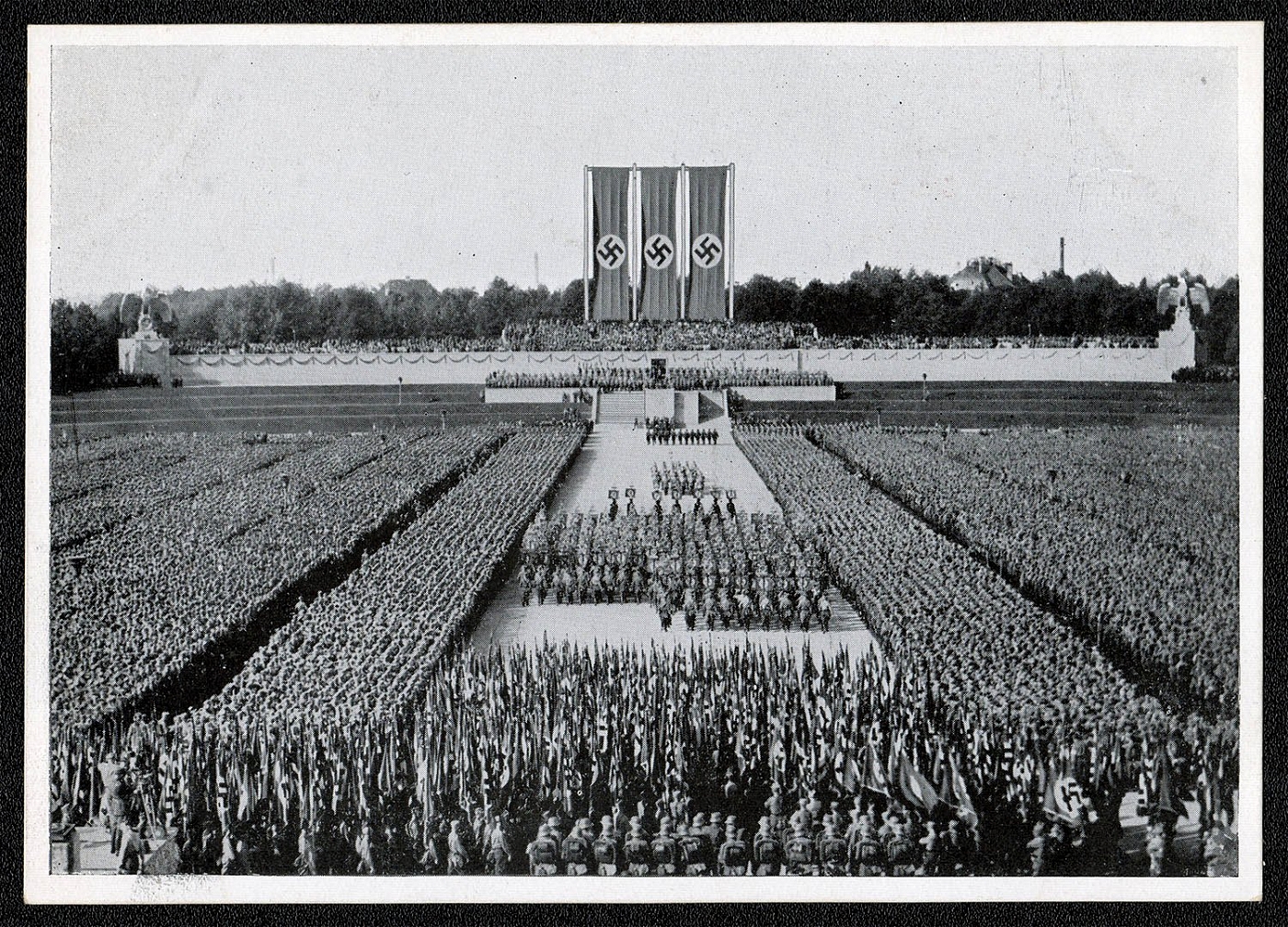
1934 Reich party rally of the NSDAP in Nuremberg, The Roll Call of the SA - Entry of the Standards
“The constant Heil Hitler’s, clicking of heels, and brown-shirted storm troopers and black-coated SS guards marching up and down the street grate me, though the old-timers say there are not nearly so many brown-shirts about since the purge . . . Twice (we) have had to duck into stores to keep from either having to salute the standard of some passing SA or SS battalion or facing the probability of getting beaten up for not doing so. Like a Roman emperor Hitler rode into this mediaeval town at sundown today past solid phalanxes of wildly cheering Nazis who packed the narrow streets that once saw Hans Sachs and the Meistersinger. Tens of thousands of Swastika flags blot out the Gothic beauties of the place, the facades of the old houses, the gabled roofs. The streets, hardly wider than alleys, are a sea of brown and black uniforms.”
Sold for:
$20
278
-
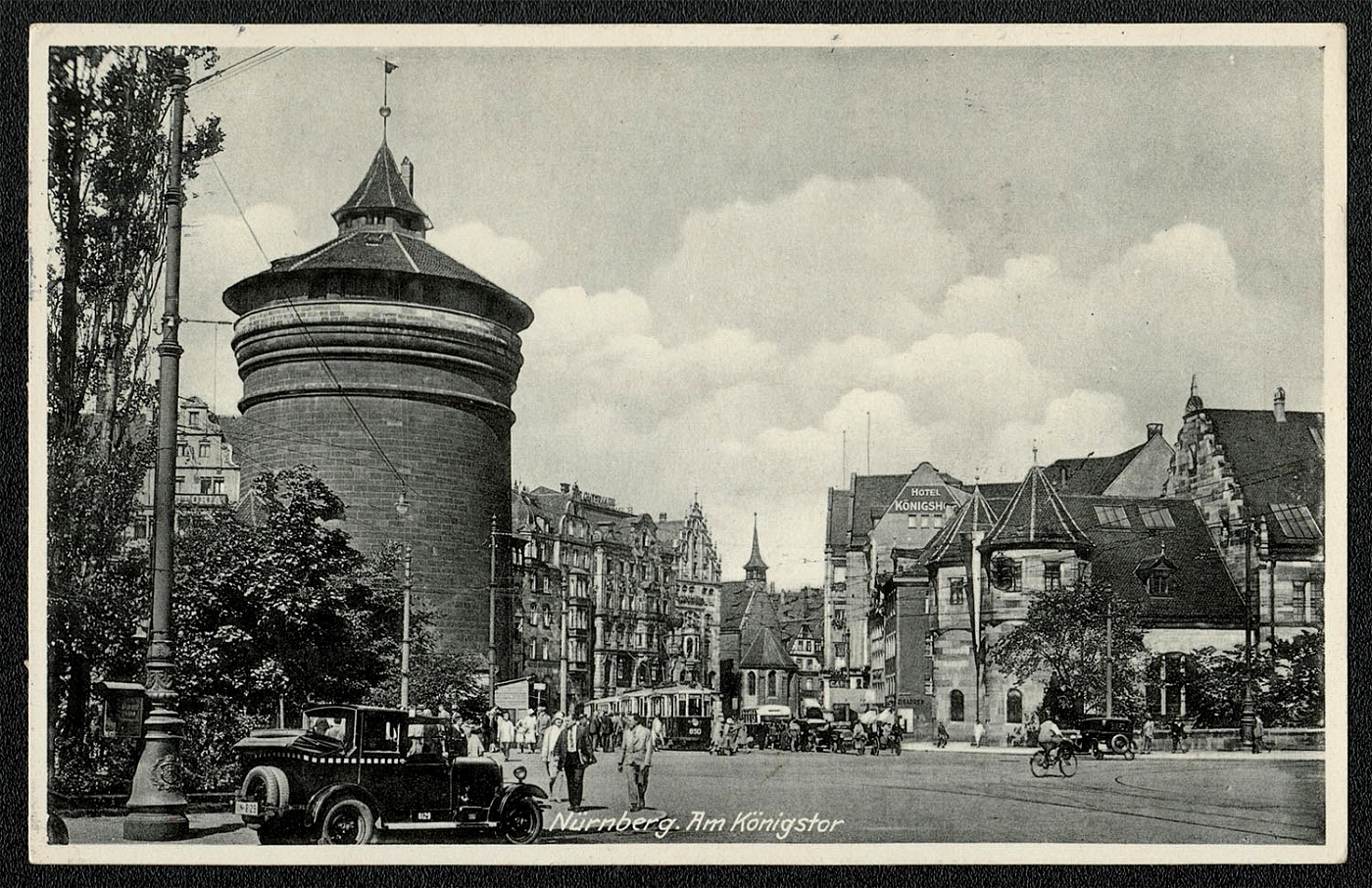
1934 Reich party rally of the NSDAP in Nuremberg, At the Konigstor
Nurnberg’s Altstadt is surrounded by a broad, dry moat and a wall dating back to 1452, although by 1934, parts of the wall had been removed at places to meet the requirements of modern traffic. The Konigstor (literally the King’s Gate), located at the southeastern corner of the Old City, was one of several gates accompanied by stout defensive towers that bore testimony to the defensive strength of Imperial Nurnberg. Scott 442 canceled with the Parteitagssonderstempel. Postamt Nurnberg 2 10 September 1934. The cancel is an example of the 20.5 mm single circle, * 2 * “flatfoot 2” variety.
Unsold
279
$20
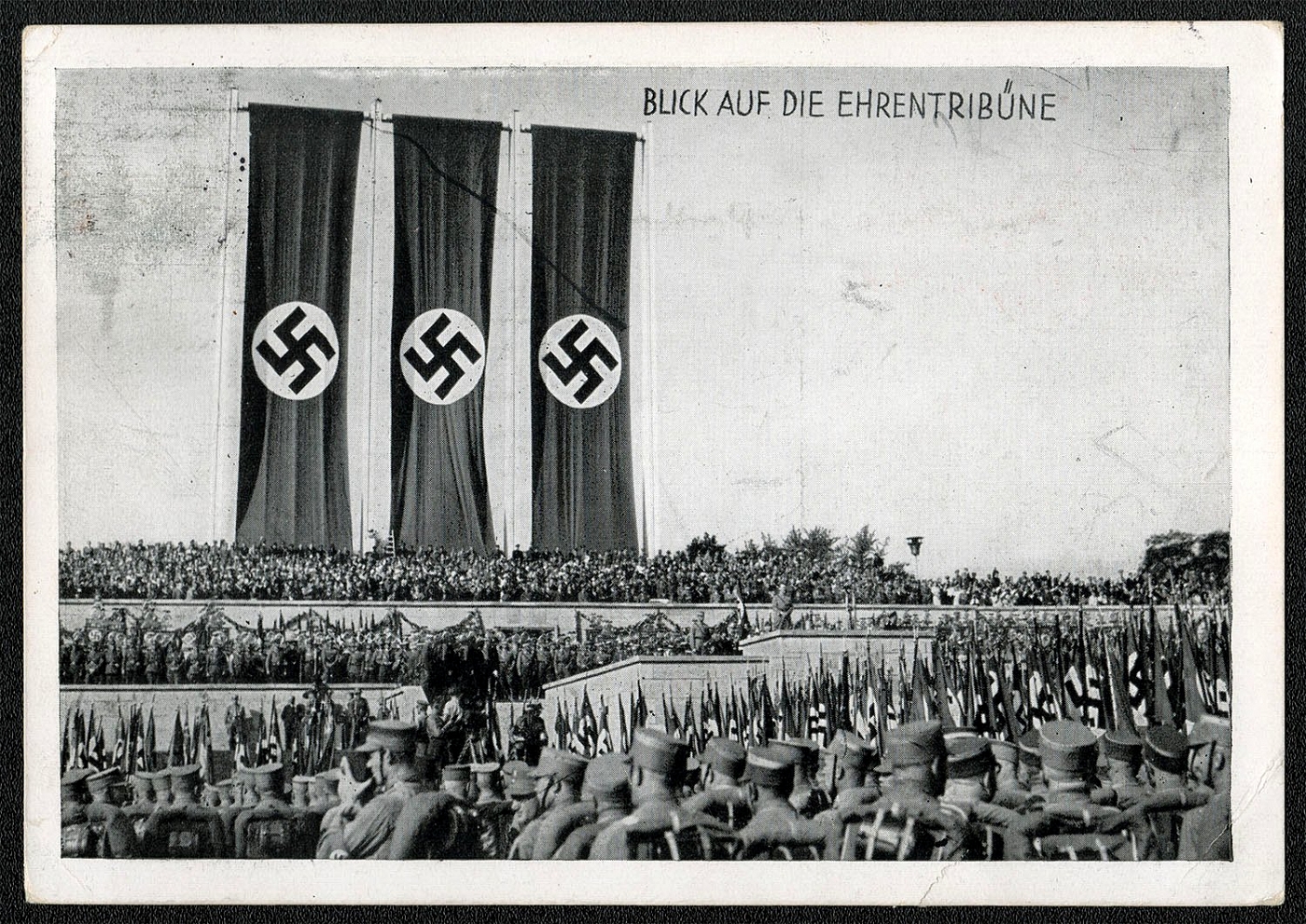
1934 Reich party rally of the NSDAP in Nuremberg, A View of the Platform of Honor
“Starting with the 1934 rally, the reactions of the foreign press were no longer made available to the German people. The party chose what favorable comments it could find and published them in the Volkischer Beobachter. To give the impression that the international press was on its side, the party rephrased or distorted articles without referring to any particular newspaper. The press reactions were merely published under subheadings of the countries in which they allegedly appeared. The Beobachter published vague, positive reactions to the 1934 rally from England, France, Hungary, and Spain.” Postamt Nurnberg 2 10 September 1934. The cancel is an example of the 20.5 mm single circle, * 2 * “flatfoot 2” variety.
Sold for:
$20
280
$20
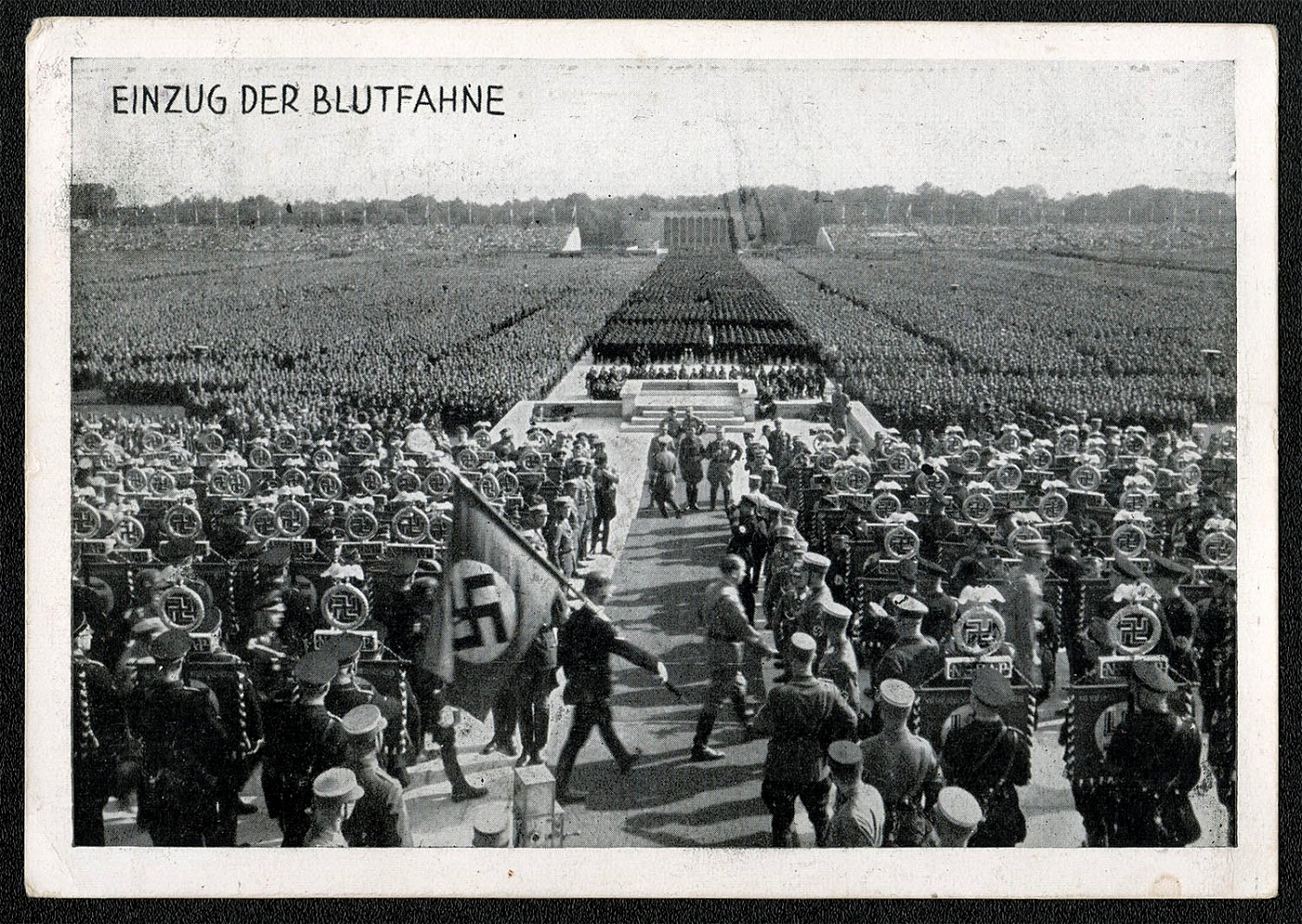
1934 Reich party rally of the NSDAP in Nuremberg, Entrance of the Blood Banner
This special flag derived its name from allegedly having been drenched in the gore of the National Socialist martyrs killed during the abortive 1923 Munich Putsch. At the party rallies held each year, Hitler consecrated new party colors by touching them with one hand while his other hand grasped the cloth of the bullet-riddled banner. Postamt Nurnberg 2 10 September 1934. Note the red Reichsparteitag 1934 cachet used by the publisher during this period.
Sold for:
$20
281
-
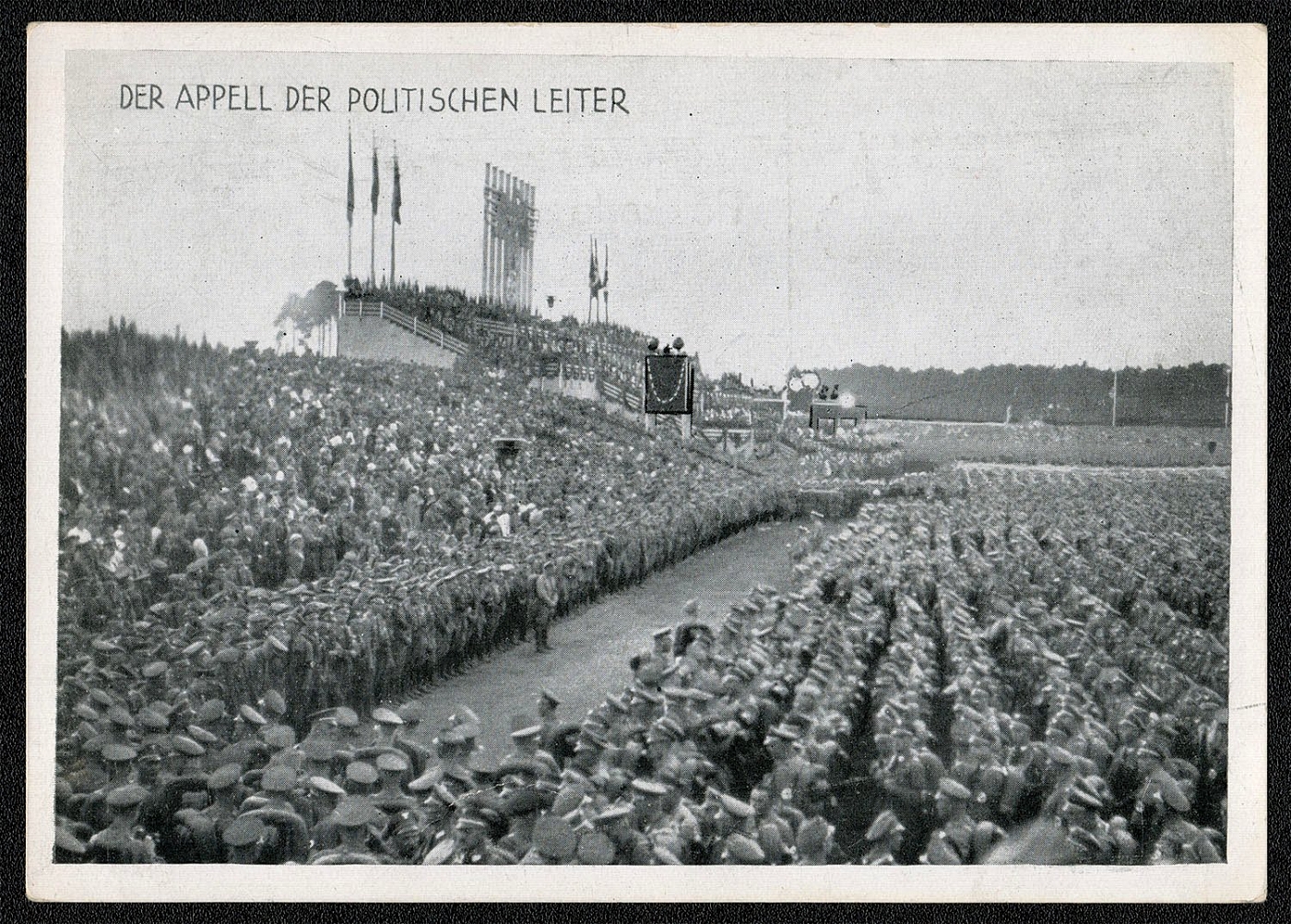
1934 Reich party rally of the NSDAP in Nuremberg, The Roll Call of the Political Managers
The Roll Call of the Political Managers
Unsold
282
$25
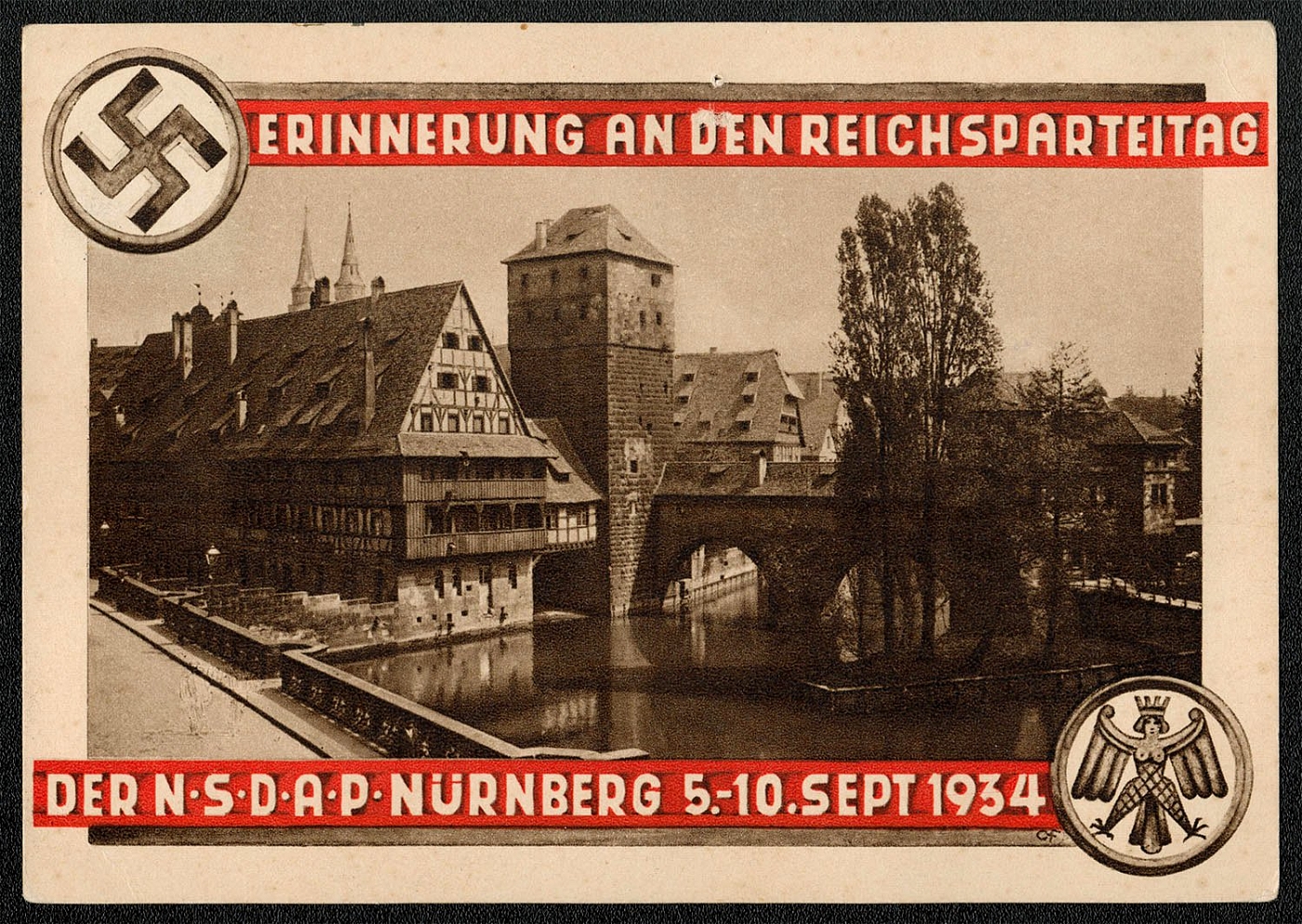
1934 Reich party rally of the NSDAP in Nuremberg, Hangman’s Bridge on the Pegnitz River.
The Pegnitz, 53 miles long, flows south and west through Nurnberg to unite with the Rednitz at Fiirth to form the Regnitz River. Scott 442 canceled with the Parteitagssonderstempel used in Postamt Nurnberg 1 dated 8 September 1934.
Sold for:
$25
283
$40
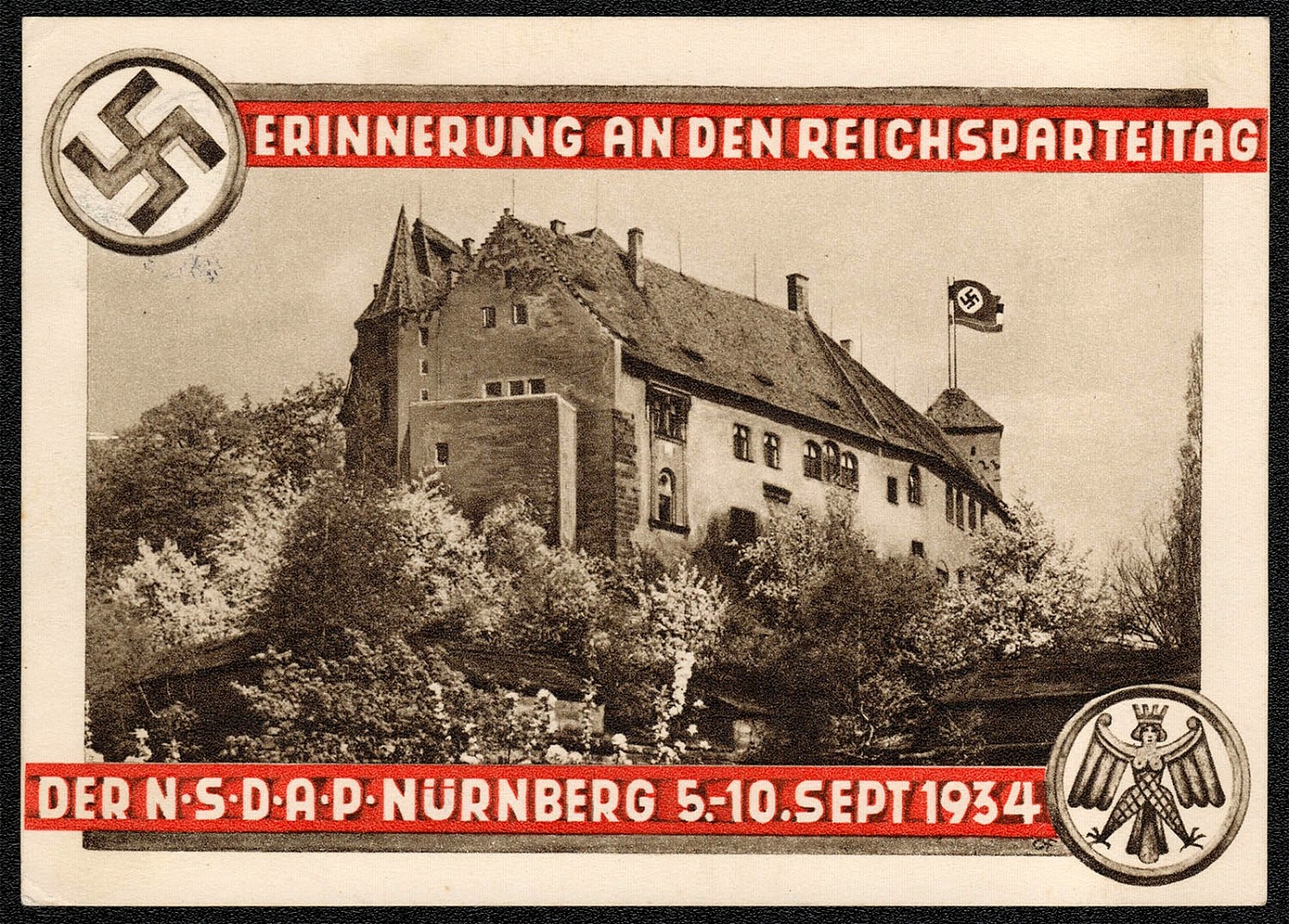
1934 Reich party rally of the NSDAP in Nuremberg, Nuremberg Imperial Castle
This Remembrance of the 1934 Reichsparteitag presents a western view of Nurnberg Imperial Castle and the bridge beside the zoological garden gate. Nurnberg’s Imperial Castle or Kaiserburg was at the center of the Empire’s history longer and more frequently than any other German castle. Of all imperial castles it was probably the only one to survive from feudal days and the rise of towns in the late Middle Ages down to the beginning of modern times. Neither the history nor the silhouette of Nurnberg is thinkable without it.
Sold for:
$40
284
$35
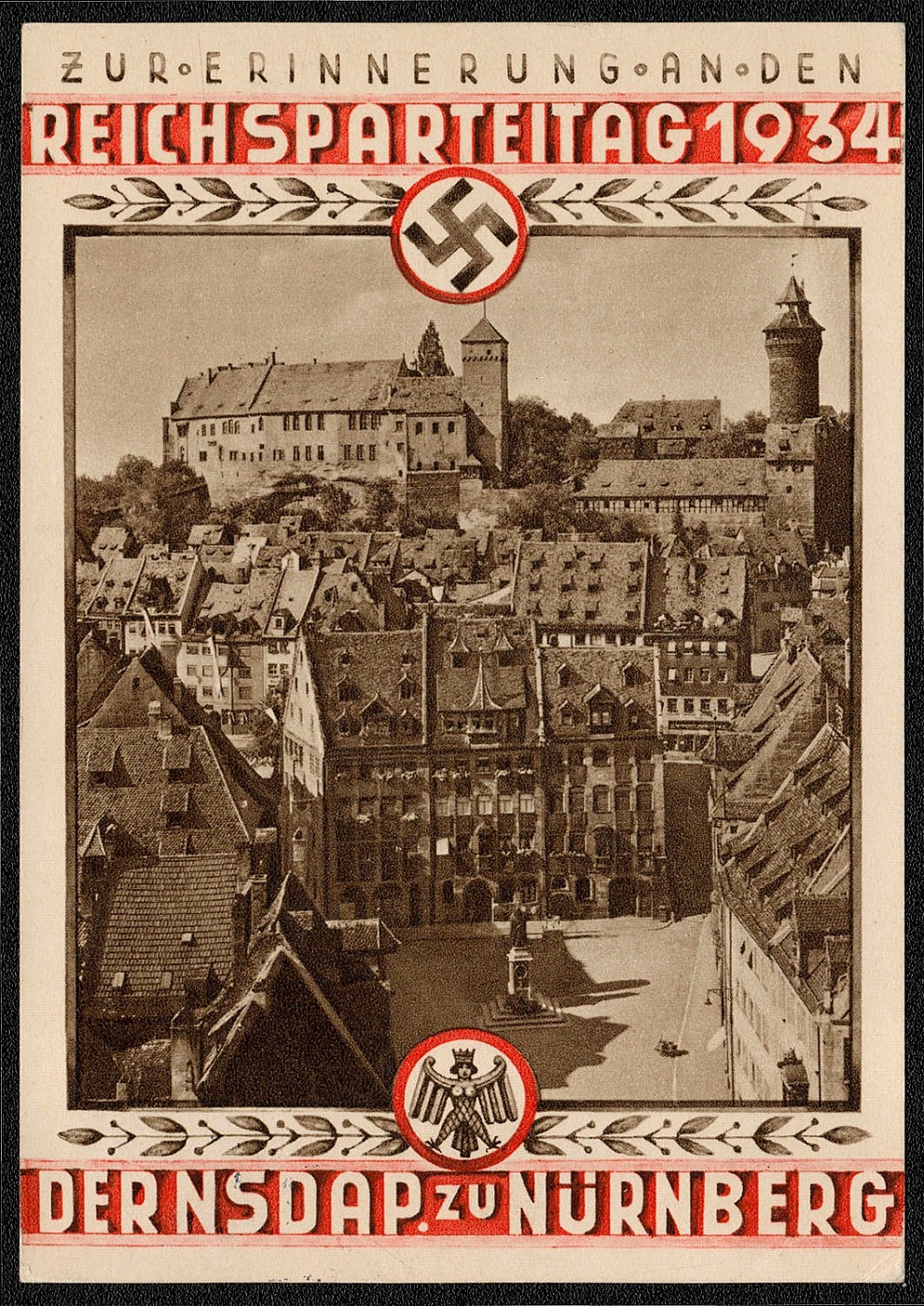
1934 Reich party rally of the NSDAP in Nuremberg, Albrecht Durer Memorial with the Imperial Castle
This Remembrance of the 1934 Reichsparteitag presents a view looking north. In the foreground is the Albrecht Durer Memorial with the Imperial Castle (left) and Vestner Tower (right) in the background. Depicted in the lower center of the card is the Jungfrauenadler (Virgin Eagle), the municipal arms of Nurnberg at the time. Postamt Nurnberg 2 9 September 1934. The favor cancel is an excellent example of the 20.5 mm single circle, * 2 * “flatfoot 2” variety.
Sold for:
$35
285
$25
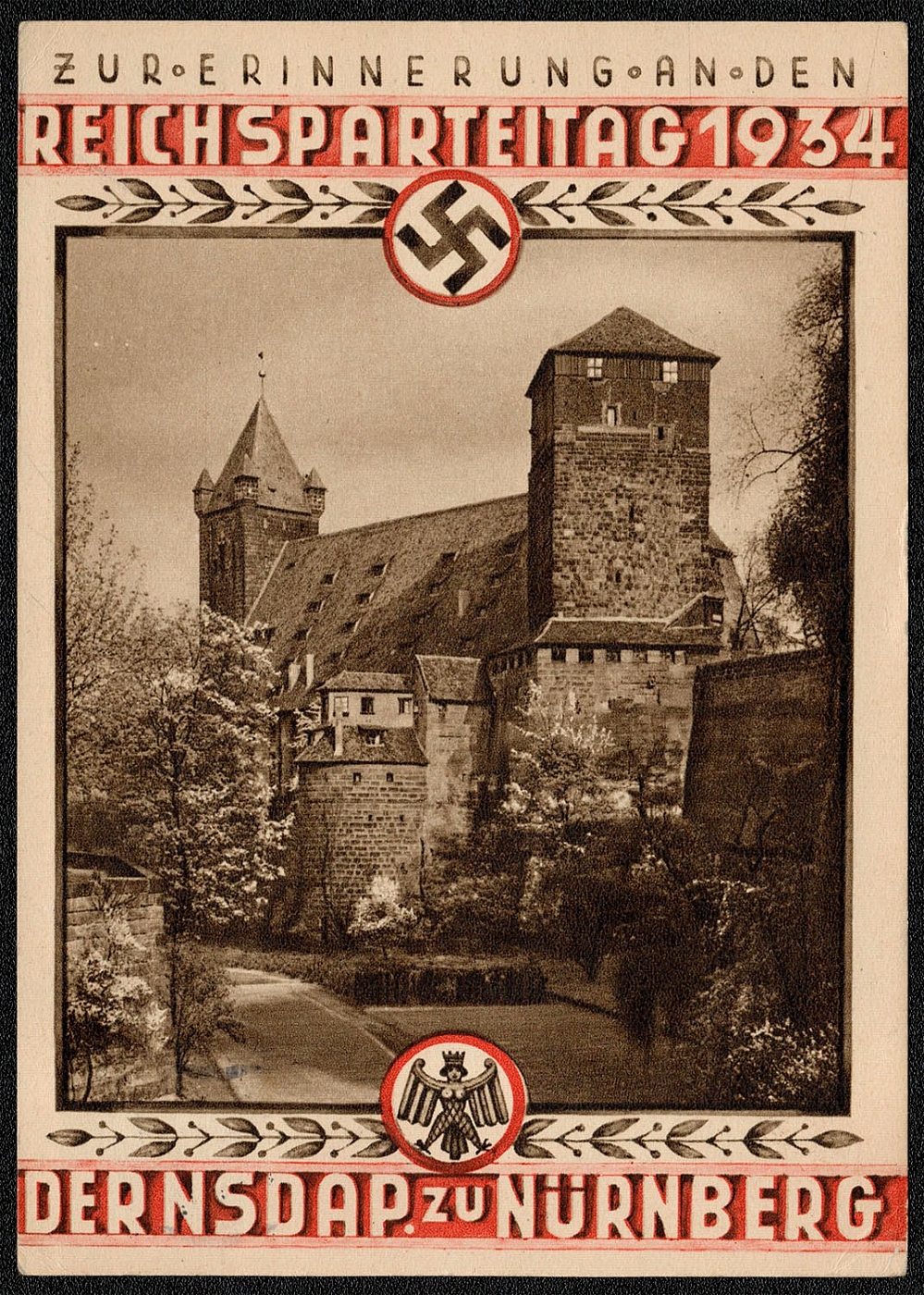
1934 Reich party rally of the NSDAP in Nuremberg, Imperial stables
This souvenir post card depicts the Kaiser’s Stables in the restored Nurnberg Castle. It was published by Verlag Wilhelm Serz G.m.b.H., Nurnberg. Rally post card franked with Scott 442 mailed 10 September 1934 at Postamt Nurnberg 2. This slogan cancel was used in three separate machines in the main post office. The single circle ,,Zwei-Sterne“-Datumstemple (two star date stamp) is known in two distinct types. In Type “a” above, the figure “2” has a curved foot. This is believed to indicate that two different dies were in simultaneous use or that the “2” in the original die was at some stage replaced with a new figure of slightly different pattern.
Sold for:
$25
286
$40
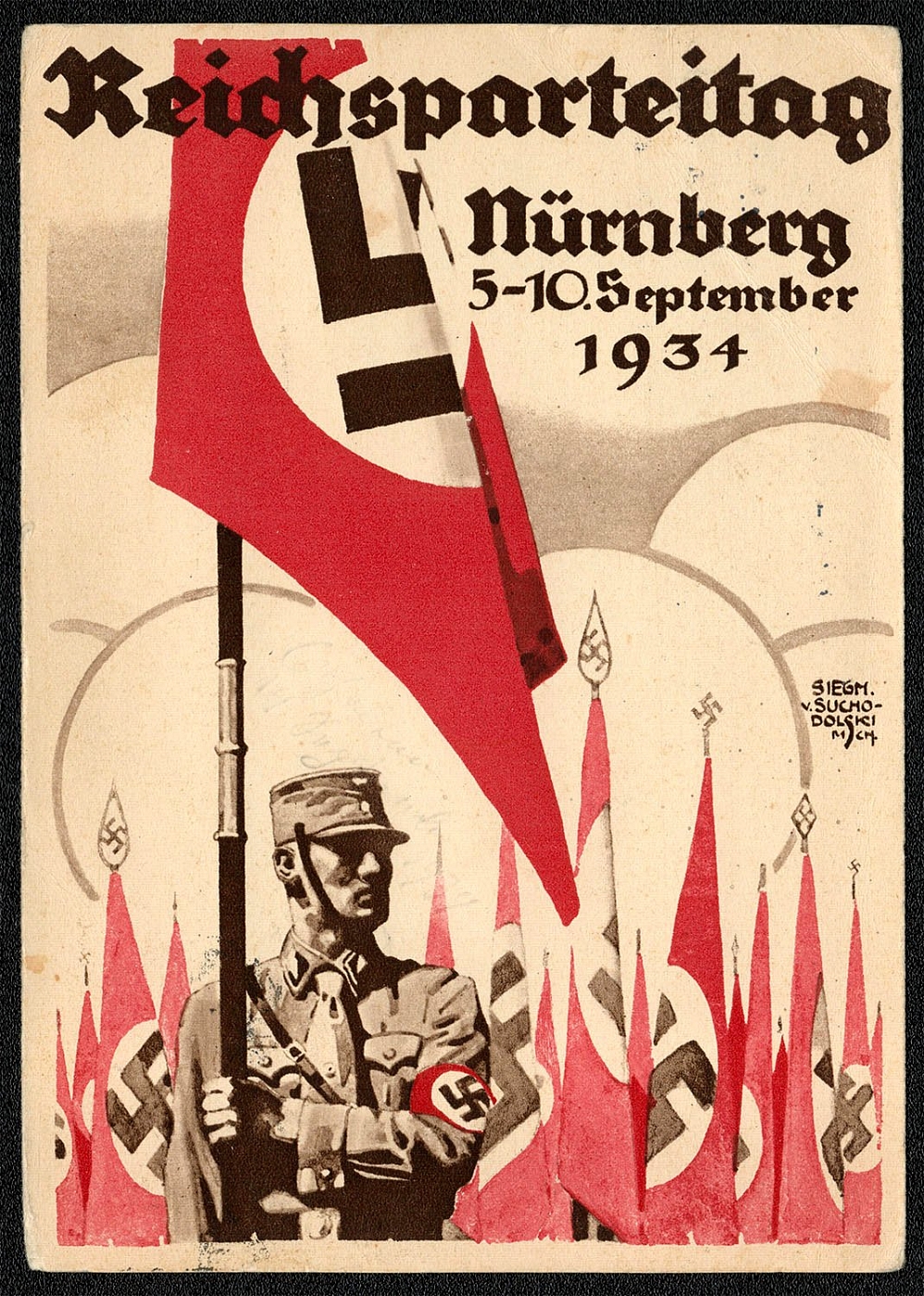
1934 Reich party rally of the NSDAP in Nuremberg, SA man holding a flag
Franz Eher Verlag of Munich, central publishers for the NSDAP, issued two types of commemorative cards for each year’s Rally. As they were available in fairly large numbers, they are more common than other unofficial cards. The above depicts an SA man holding a flag with others behind. It was designed by Siegmar von Suchodolski. This card was postally used to the US (6 September 1934), albeit lacking sufficient postage. The card bears two US postage due stamps. Unfortunately, someone, either the recipient or a family member, removed the German franking.
Sold for:
$40
287
$40
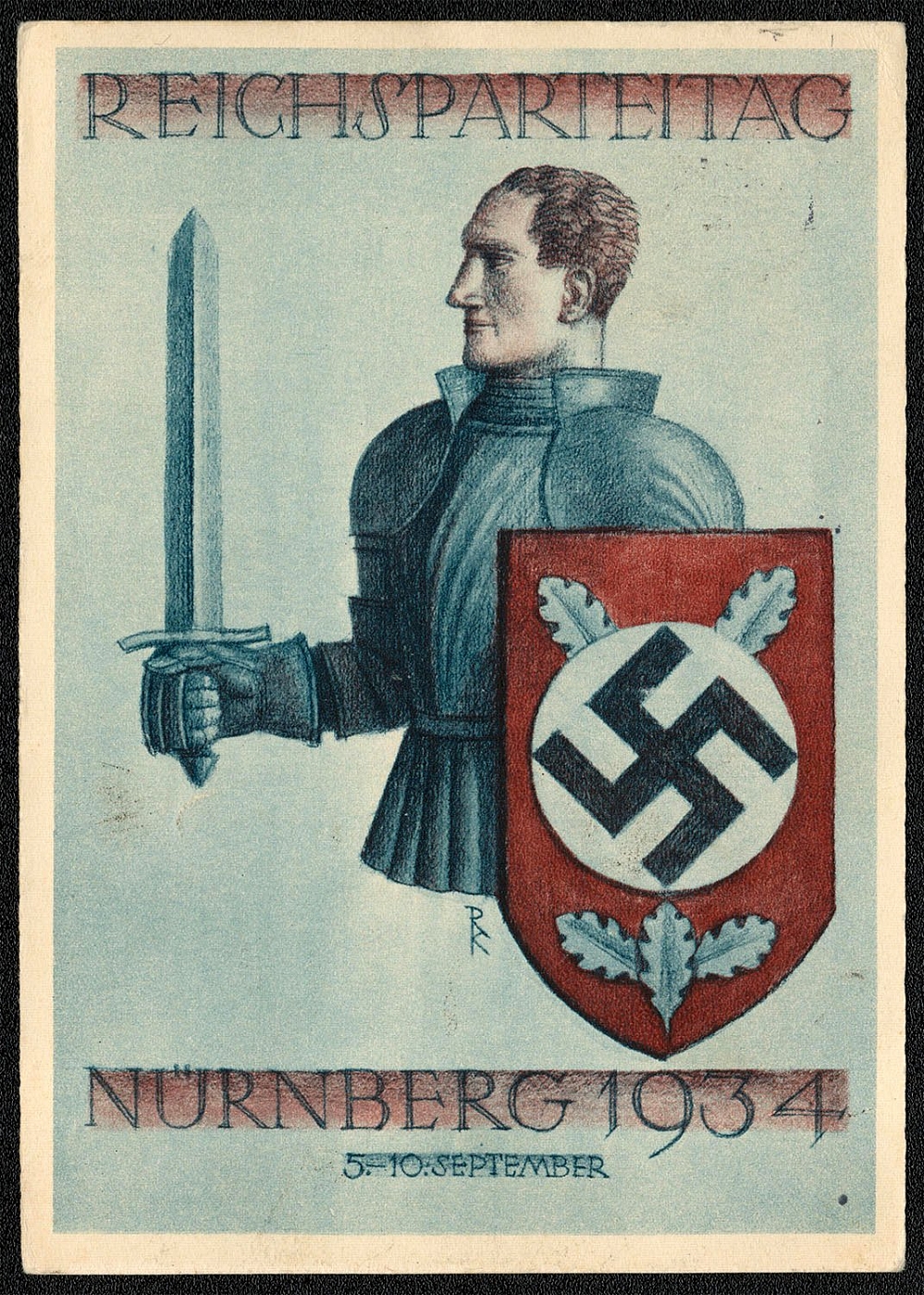
1934 Reich party rally of the NSDAP in Nuremberg, Knight with a swastika shield
Several post cards were published to celebrate the 6,h Party Rally. The above could be termed the semi-official card issued by the Party. It depicts a mythical NSDAP knight with a swastika shield. It was produced by Verlag Frz. Eher, Munich 2 from a copperplate by Brend’amour, Simhart & Co., Munich. Rally post card franked with Scott 442 mailed 9 September 1934 at Postamt Nurnberg 2. This slogan cancel was used in three separate machines in the main post office. The single circle ,,Zwei-Sterne“-Datumstemple (two star date stamp) is known in two distinct types. In Type “b” above, the figure “2” has a straight foot. This is believed to indicate that two different dies were in simultaneous use or that the “2” in the original die was at some stage replaced with a new figure of slightly different pattern.
Sold for:
$40
288
$100
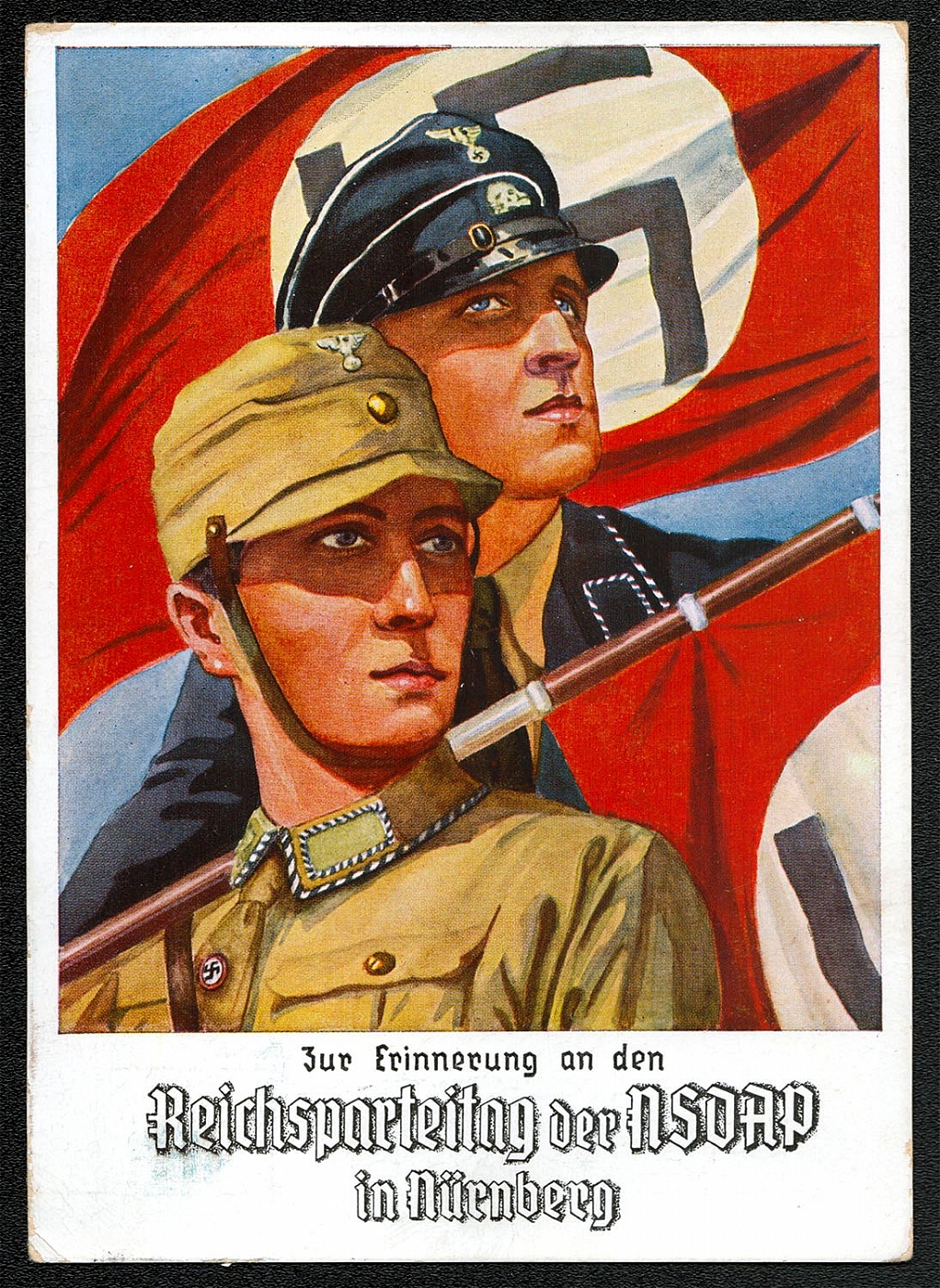
1934 Reich party rally of the NSDAP in Nuremberg, SA and SS Men, RARE card !!
Franked with Michel 546, posted 8 September 1934. The newly designed bffentliche sonderhandstempel (publicity slogan cancellation) was placed in five automatic canceling machines in the three main Nurnberg post offices in the weeks before the Rally. It featured a large swastika banner reminiscent of the huge flags displayed in the Luitpold Arena at the Rally grounds.
Sold for:
$100
289
$140

1934 Reich party rally of the NSDAP in Nuremberg, Eagle with oak branch, RARE card !!
Hitler’s 1933 decree designating Nurnberg as the City of the National Party Rallies, coupled with Goebbels’ popularization of the town in the press, magazines and films, quickly led to worldwide recognition of the Altstadt. This post card was designed by Hans Friedmann and published by Stiirmer Verlag, Nurnberg. (Sturmer is only known to have published two Rally cards.) All mail collected by the temporary camp post offices was sent to the main post offices in Nurnberg or Fiirth for cancellation and forwarding. There it was put through machines which applied the common slogan and flag cancellation or cancelled with the special commemorative handstamp on this post card. The double ring cancellation bears the words “Reichsparteitag/Nurnberg” in the outer ring with the two words separated by two five-pointed stars. Above the date bridge are the letters “NSDAP” and below is a small swastika. The official instructions governing the use of this handstamp have not survived, but it was probably used at a philatelic counter in one or more post offices and applied on request. These handstamps are unusual in that none of them bear the normal initial letter which served to identify the counter clerk to whom it was issued, It is therefore not possible to establish the number used and only by finding examples on registered mail is it possible to discover to which post offices they were issued. None have come to light so far. According to the Bochmann Catalog, these handstamps were in use from 29 August to 10 September 1934, and were, therefore, not confined to mail posted during the Rally week. Over 3 million items
Sold for:
$140
290
-
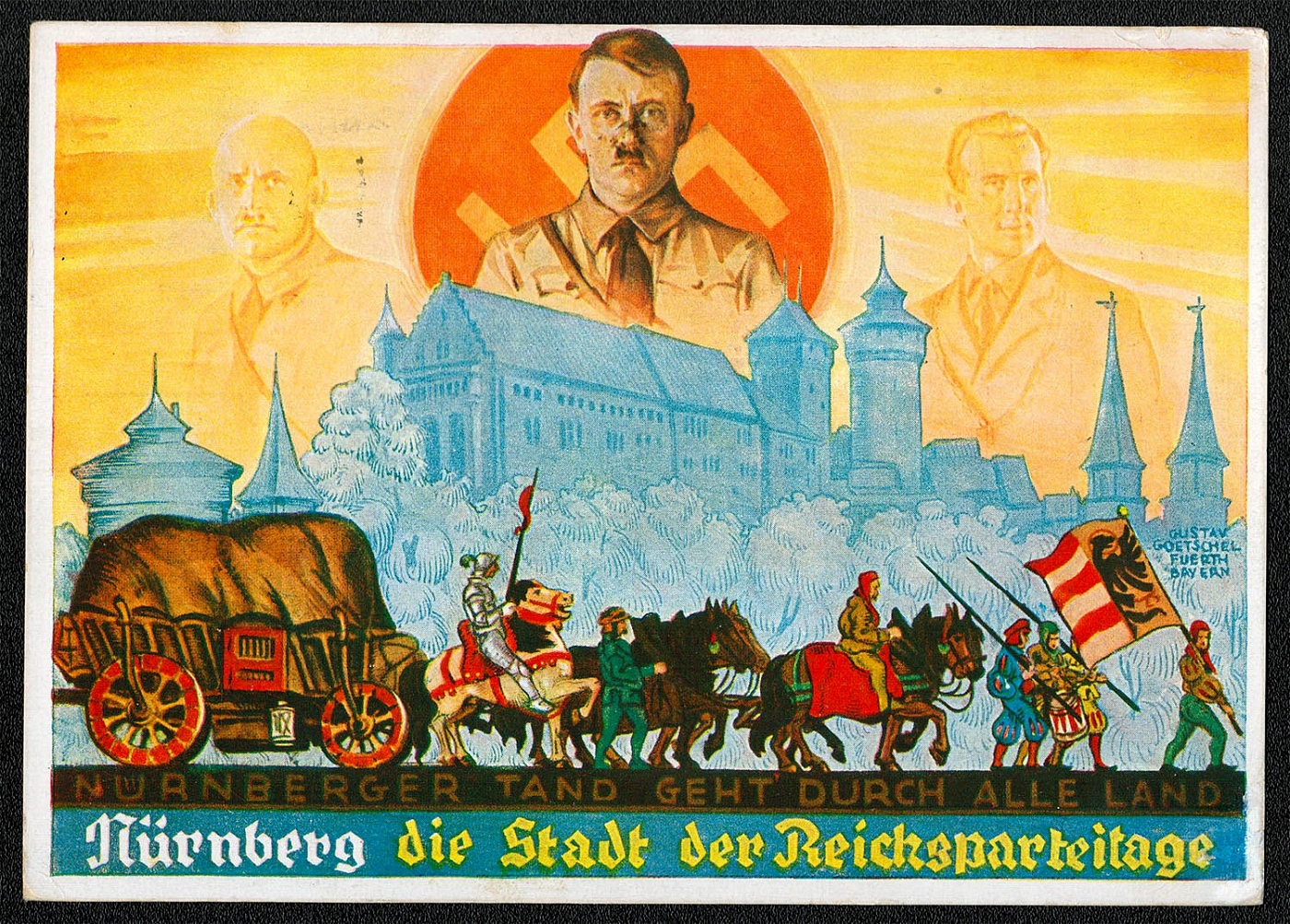
1934 Reich party rally of the NSDAP in Nuremberg, Nuremberger finery moves through all the land
Depicted is Julius Streicher (left) and Willey Liebel, Mayor of Nurnberg (right). This card was published by Hunsinger in time for the 1933 Rally, but it was not posted until 9 September 1934. Its design bears no indication that it was specifically produced for either Rally. Therefore, it cannot be regarded as a true “Rally card” as defined by the recognized authorities on Niirnberg postal history, John Rawlings and Michael Passmore. These two researchers only consider a true Rally card as one which was specifically designed and produced to commemorate a particular Reichsparteitag. Hunsinger is known to have published at least 12 different Rally cards. Zerreiss & Co. is known to have published 31. Printed annotations include: Original-Entwurf Gustav Goetschel, Furth і. B. - Alleinvertrieb H. Hunsinger, (Original design by Gustav Goetschel, Furth in Bayern - Exclusive Distribution by H. Hunsinger, Nurnberg) Reproduktion und Druck: Graphische Kuntsanstalt Zerreiss & Co., Nurnberg (Reproduction and Printing: Graphic Arts Publisher Zerreiss & Co., Nurnberg) Nachbildung jeder Art verboten! (Copying of any kind is forbidden!)
Unsold
291
$20
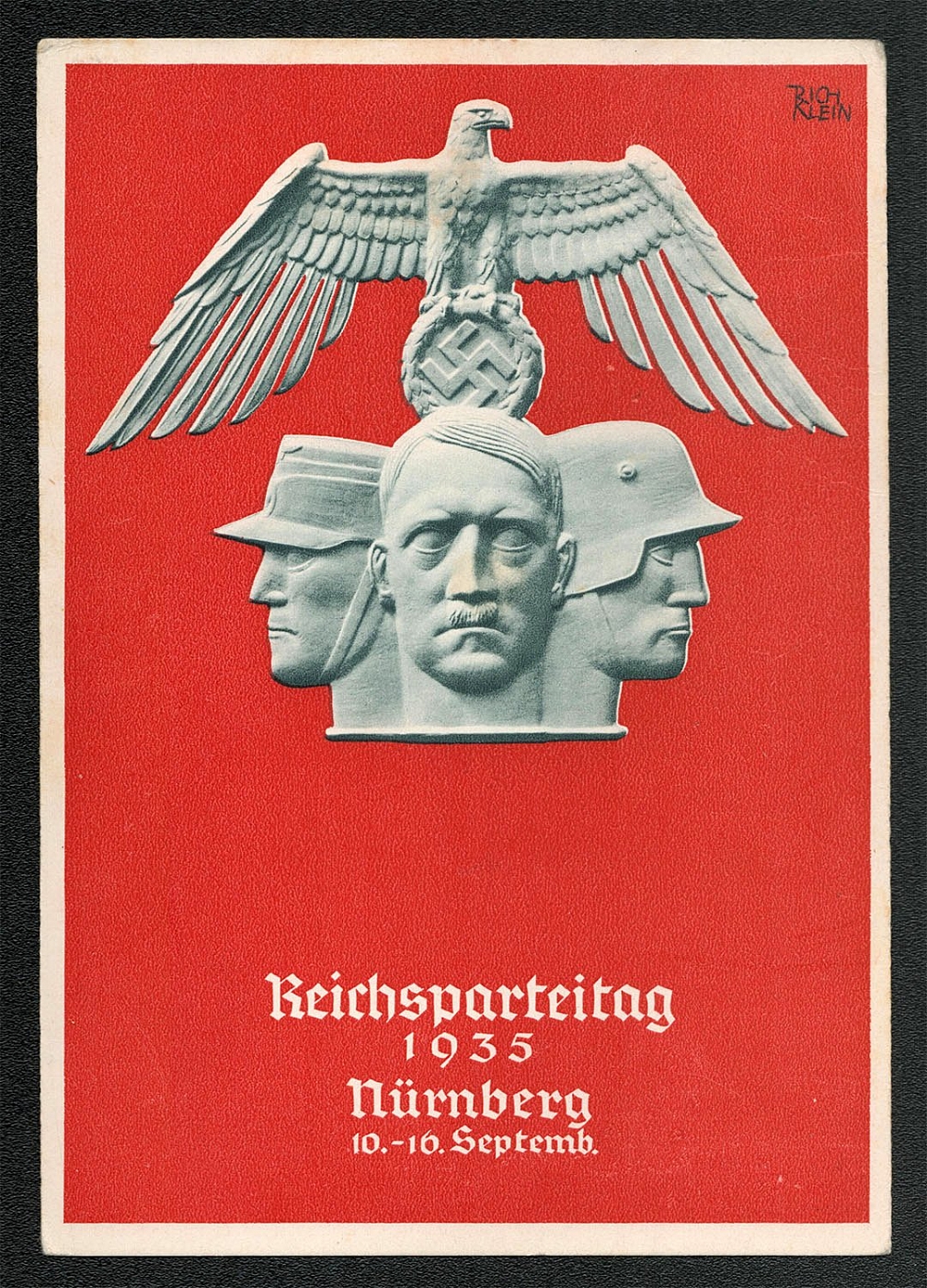
1935 Reich party rally of the NSDAP in Nuremberg, SA Mann, Hitler, and a front-line soldier
The official N.S.D.A.P. post card for the 1935 Nurnberg Rally. Represented is an SA Mann, Hitler, and a front-line soldier. It was designed by Richard Klein and published by Verlag Franz Eher, Miinchen 2 from a copperplate by Brend’amour, Simhart & Co., Miinchen. Rally post card franked with Scott 463 mailed 11 September 1935 at Postamt Niirnberg 2. The official publicity slogan cancel was employed in two separate dies. The one above used the single circle “2 star” date stamp.
Sold for:
$20
292
$40
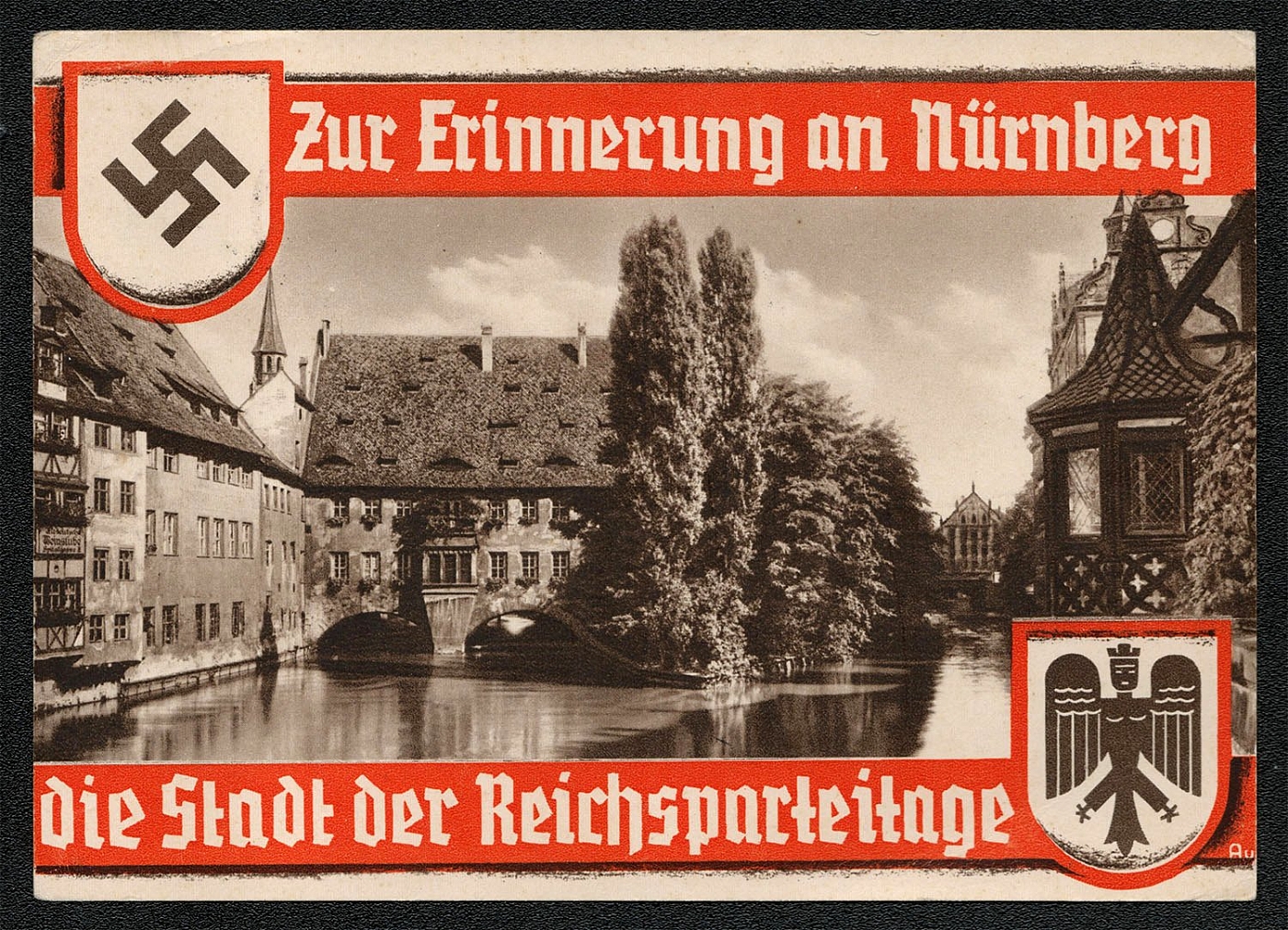
1935 Reich party rally of the NSDAP in Nuremberg, Museum Bridge towards Holy Ghost Hospital
Nurnberg: A view of the Museum Bridge towards Holy Ghost Hospital. View card R 30 published by Kunstverlag Georg Michel, Nurnberg-8. Printed by C. Lipp & Co., Munich, designed by Sepp Aumeier. This card is franked with Sc 465 and was postally used 11 September 1935. The slogan cancellation features the same vertical swastika banner as the 1934 design, and the announcement in the official Post Office Bulletin (Amtsblatt) indicates it was intended to be identical in both design and wording, apart from the necessary changes in date. However, in the new design, the “mit” which separates the two dates in the lower line of the slogan in the 1934 version has been replaced by the word “bis. ”
Sold for:
$40
293
$40
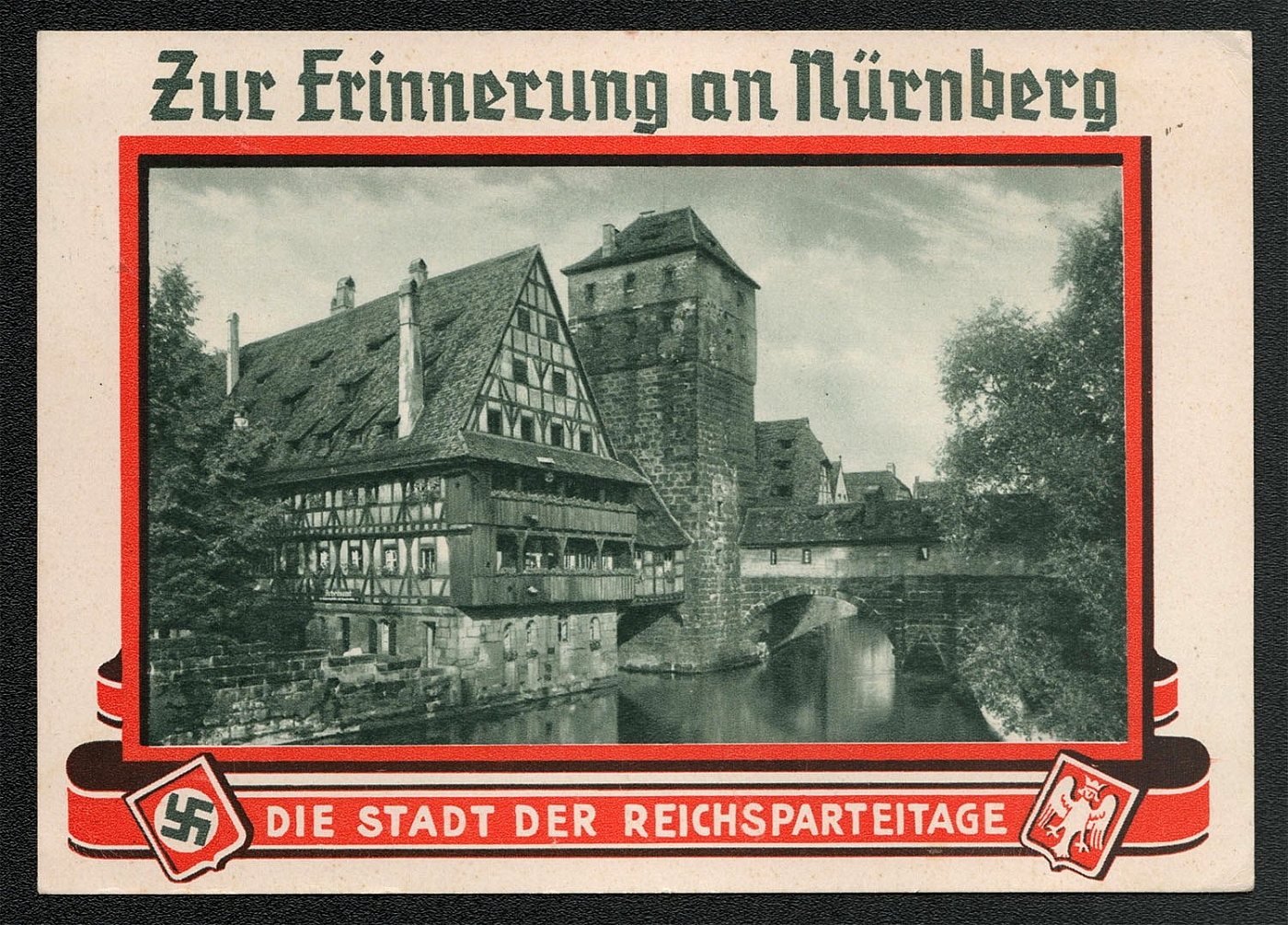
1935 Reich party rally of the NSDAP in Nuremberg, Hangmans Path
Nurnberg: Hangmans Path View card R 32 published by Kunstverlag Georg Michel, Niirnberg-8. Printed by C. Lipp & Co., Miinchen. This postally used card is franked with Sc 465 and was mailed 12 September 1935 from Postamt Nurnberg 2. The official publicity slogan cancellation employed by that office, a single circle date stamp, was available in two separate dies. The die “3 star” variety was used above.
Sold for:
$40
294
$35
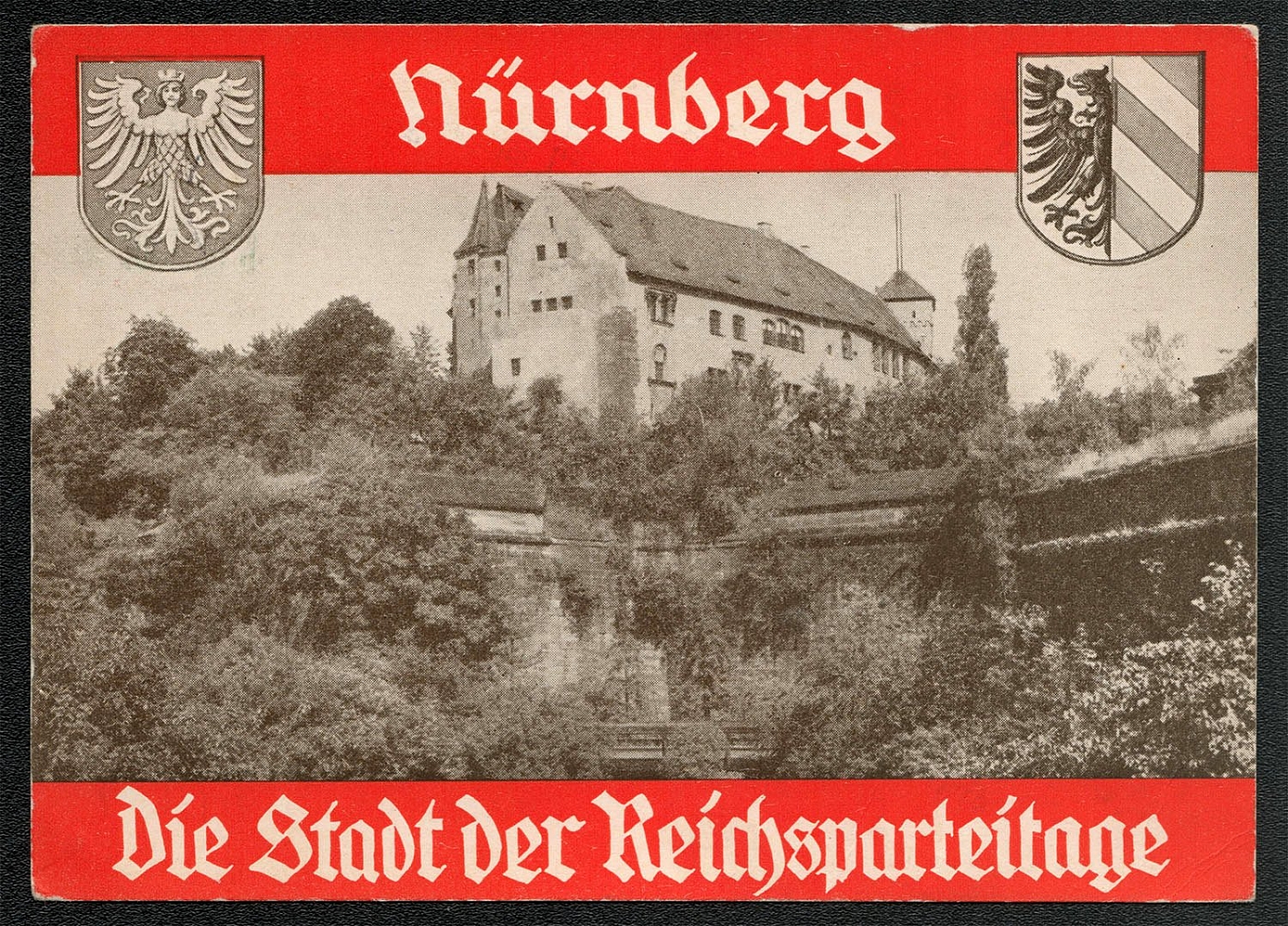
1935 Reich party rally of the NSDAP in Nuremberg, Imperial Castle
This Nurnberg view card offers the popular western view of the Imperial Castle and the bridge beside the zoological garden gate. The Kaiserburg or Imperial Castle was probably founded in the ll,h century, and enlarged by Frederick Barbarossa in the 12,h. It was frequently altered through the years. The zoological gardens on the west side of the Castle are said to have been laid out in 1487.
Sold for:
$35
295
$30
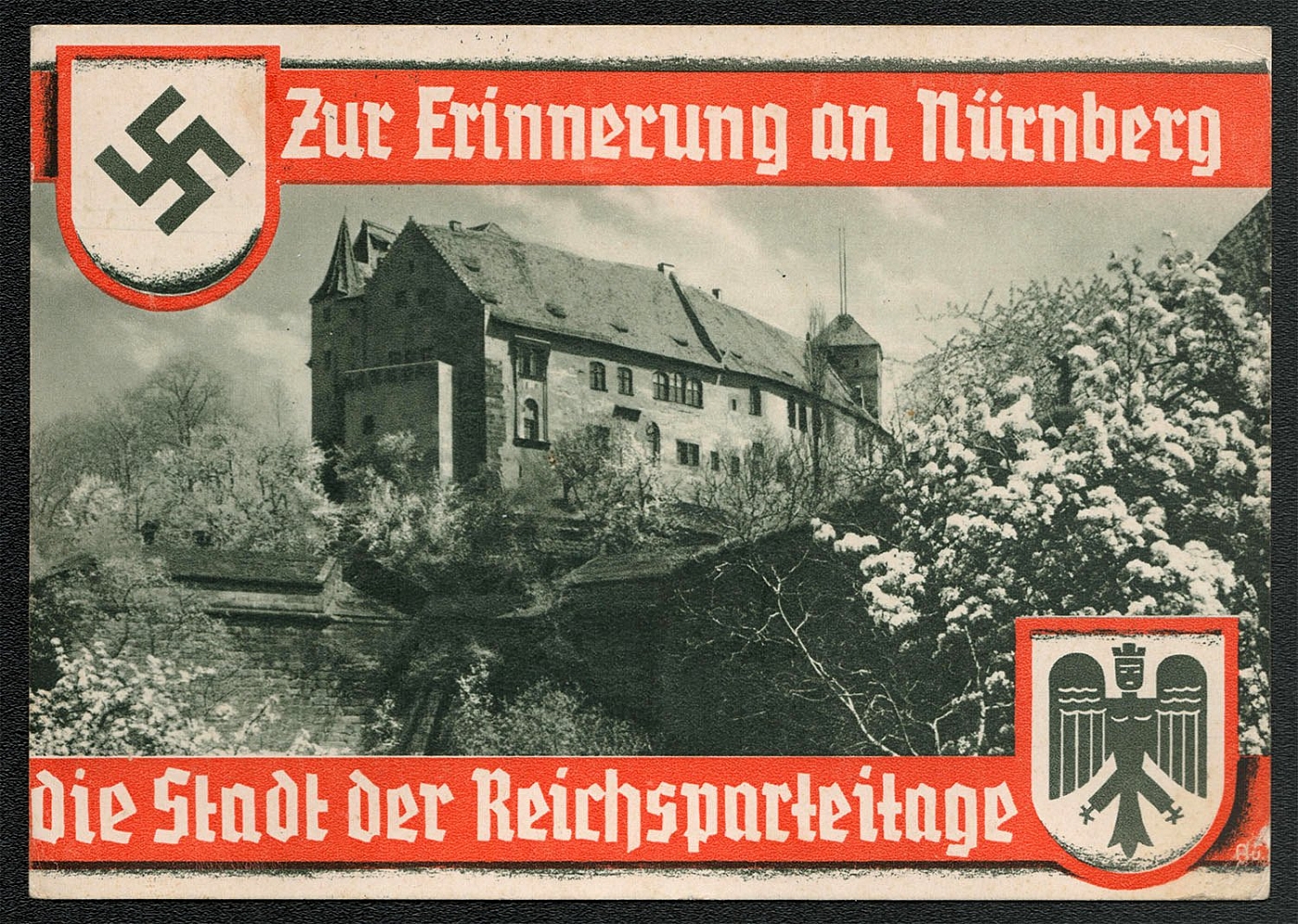
1935 Reich party rally of the NSDAP in Nuremberg, Castle from the west
This Nurnberg view card was philatelically prepared in that it is over franked (uberfrankiert) with both values of the 1935 Reichsparteitag issue (Sc 465-66). It was postally used, however, and mailed from Postamt 2 on 15 September 1935. It received the Besonder Handstempel cancel which is usually found on unaddressed cards and covers. Therefore, a postally used card such as this has greater value. This particular cancel also has a “c” below the date bridge. Compare it with the “b” version used on the card mailed 14 September.
Sold for:
$30
296
$35
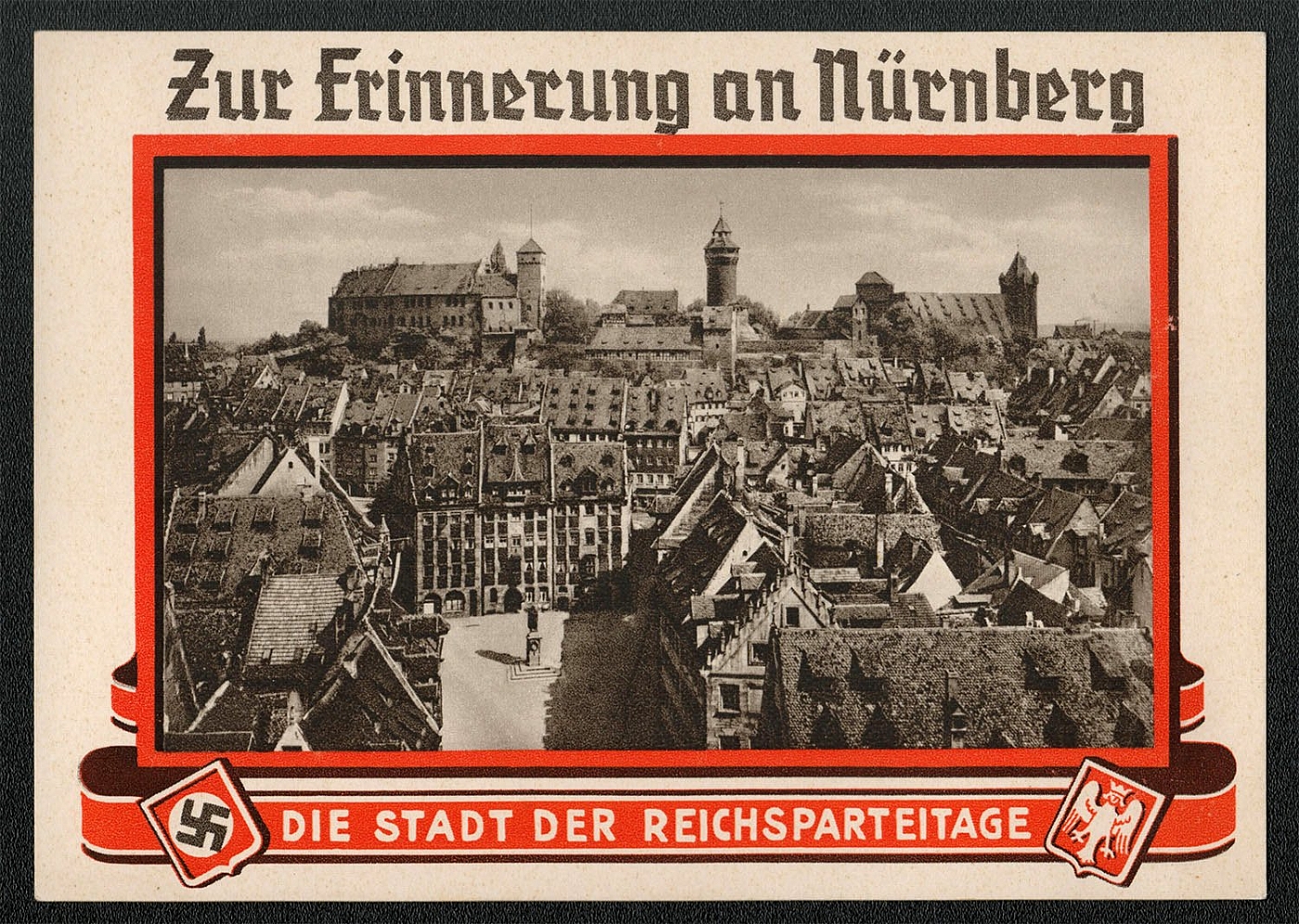
1935 Reich party rally of the NSDAP in Nuremberg, Albrecht Durer Memorial with the Imperial Castle
"This Remembrance of Nurnberg presents a view of the old city from Sebalduskirche with the Albrecht Diirer Memorial in the foreground. The Imperial Castle dominates the background on the left, with the Vestner Tower in the center, and Luginsland on the right. The Vestner or Sinwell (Round) Tower is Nurnberg’s only medieval round tower, and was built in the 13""1 century. The Luginsland is a square tower surmounted by a helm with four turrets. The town erected it during the bitterly cold winter of 1377. It was intended to allow the Free City to watch what was happening in the Castle and was thus part of the system of defenses with which the town surrounded the Castle before its final destruction in 1420."
Sold for:
$35
297
$30
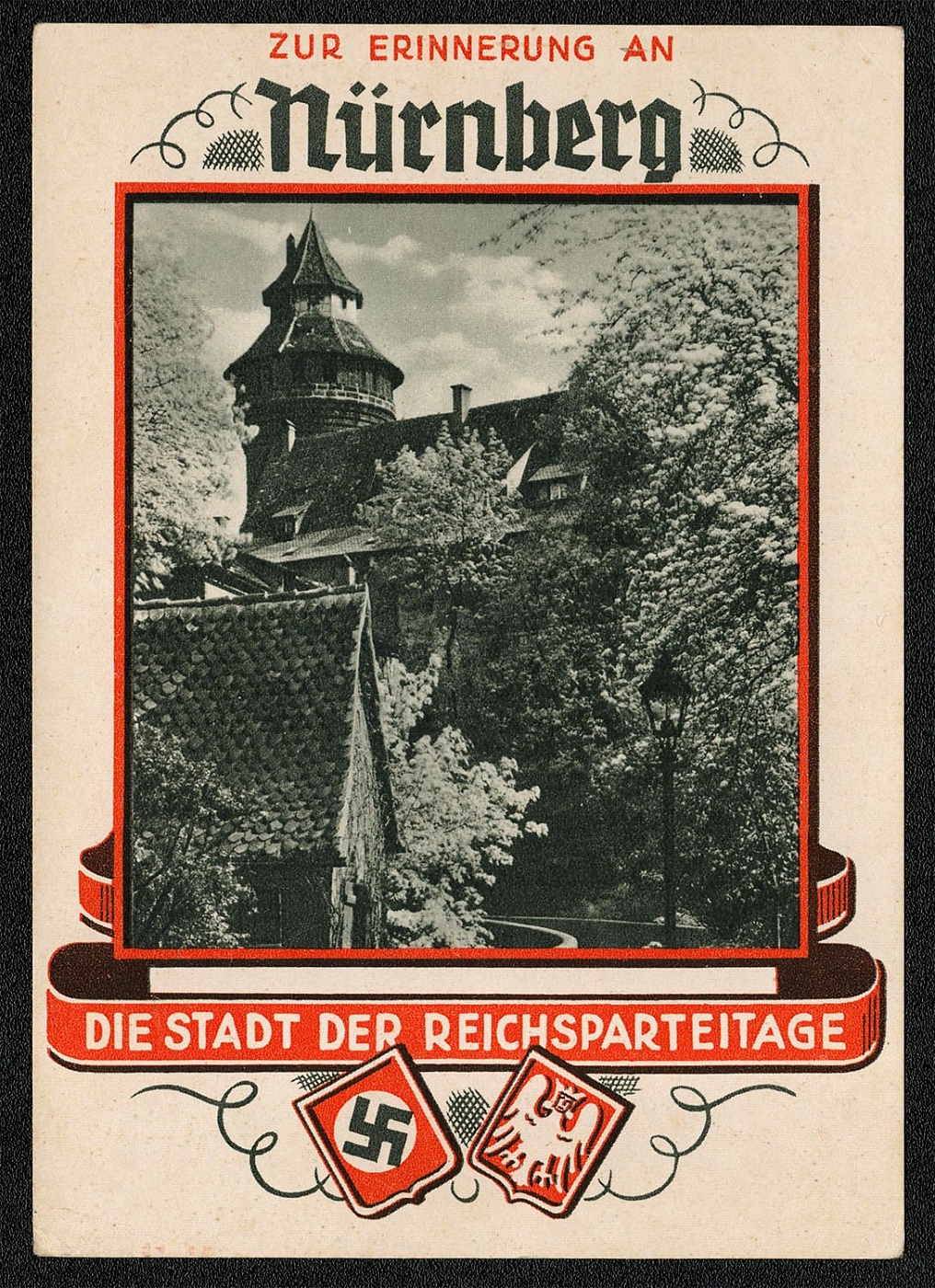
1935 Reich party rally of the NSDAP in Nuremberg, The legendary rear entrance to the Castle
View card (R28) published by Kunstverlag George Michel, circa 1935, presenting a view of the ascent to Nurnberg Castle. Printed by C. Lipp & Co., Munich.
Sold for:
$30
298
$35
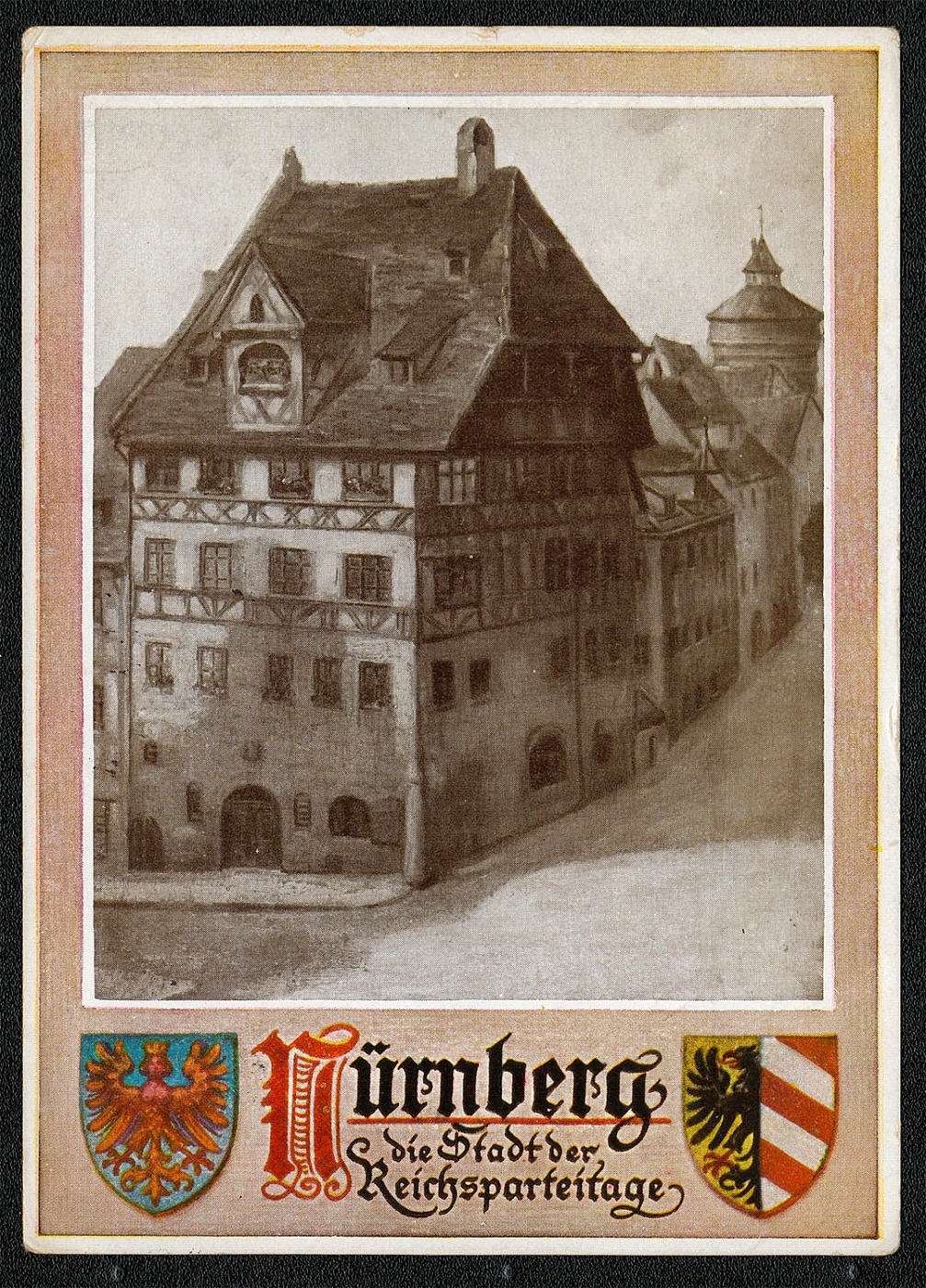
1935 Reich party rally of the NSDAP in Nuremberg, Albrecht Dürer's house
View card (Series 2) published by Verlag Wilhelm Serz, circa 1935, presenting a sketch of Albrecht Diirer’s house. View card published by Wilhelm Sen franked with Sc 465 with the slogan cancellation Nurnberg - die Stadt der Reichsparteitage (Niirnberg - The City of the National Party Rallies) in traditional German longhand script (Siitterlin). The slogan first made its appearance in the months following the end of the 1934 Rally. Depicted are the two shields from the city’s coat of arms. The slogan was inserted in automatic canceling machines in the three Nurnberg post offices and was used in combination with date stamps of various designs. This card was mailed from Postamt Nurnberg 2, on 18 September 1935, two days after the official closing of the Rally.
Sold for:
$35
299
$20
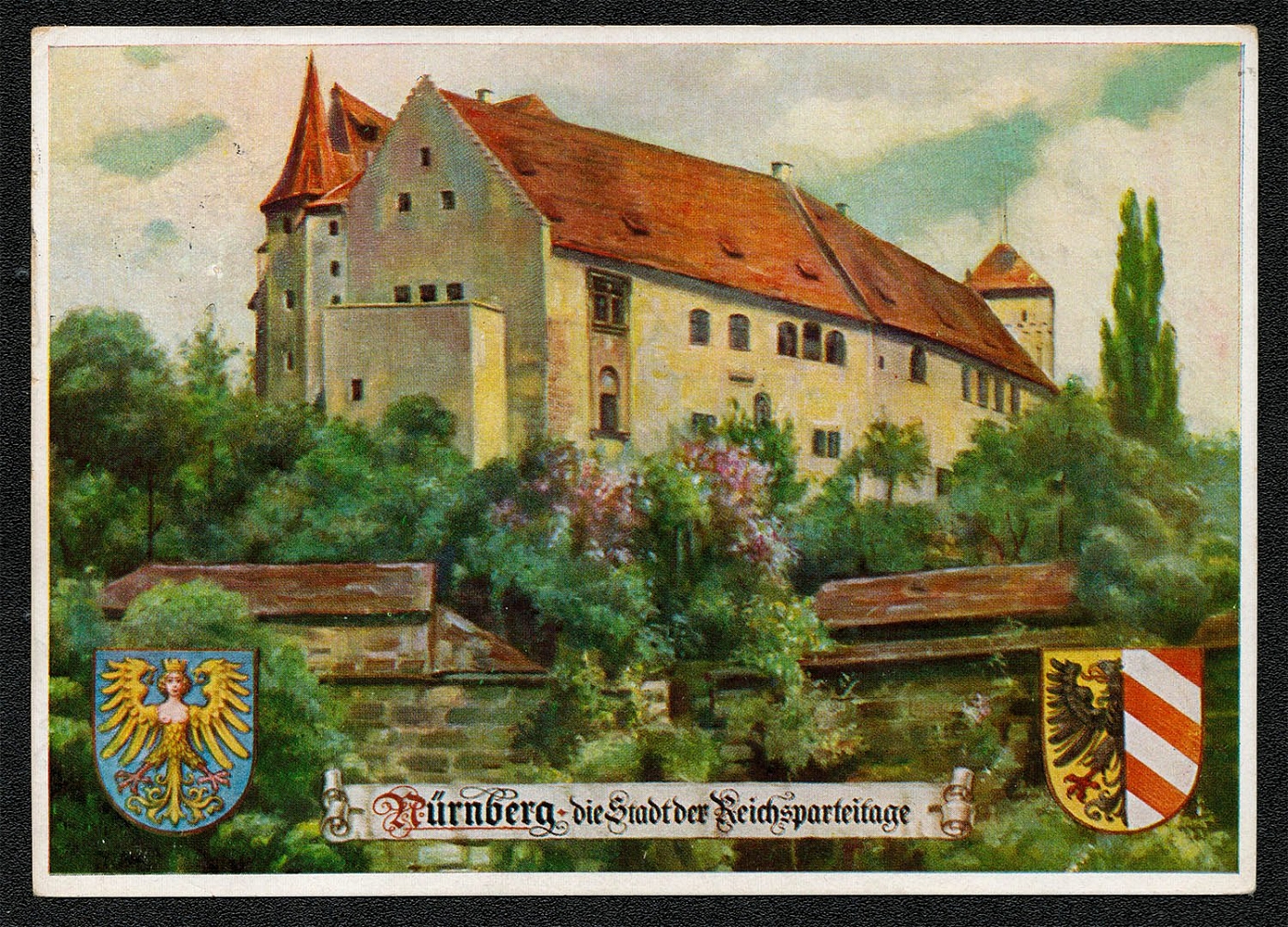
1935 Reich party rally of the NSDAP in Nuremberg, The Imperial Castle as seen from the West
The Imperial Castle as seen from the West (After a painting by Kunz Weidlich. Published by Wilhelm Serz Niirnberg Series 1) This view card is franked with Sc 465 and was postally used 16 September 1935. It was mailed from Postamt Niirnberg 2 and was cancelled with the single circle, “2 star” date stamp variety of the official publicity slogan.
Sold for:
$20
300
$45
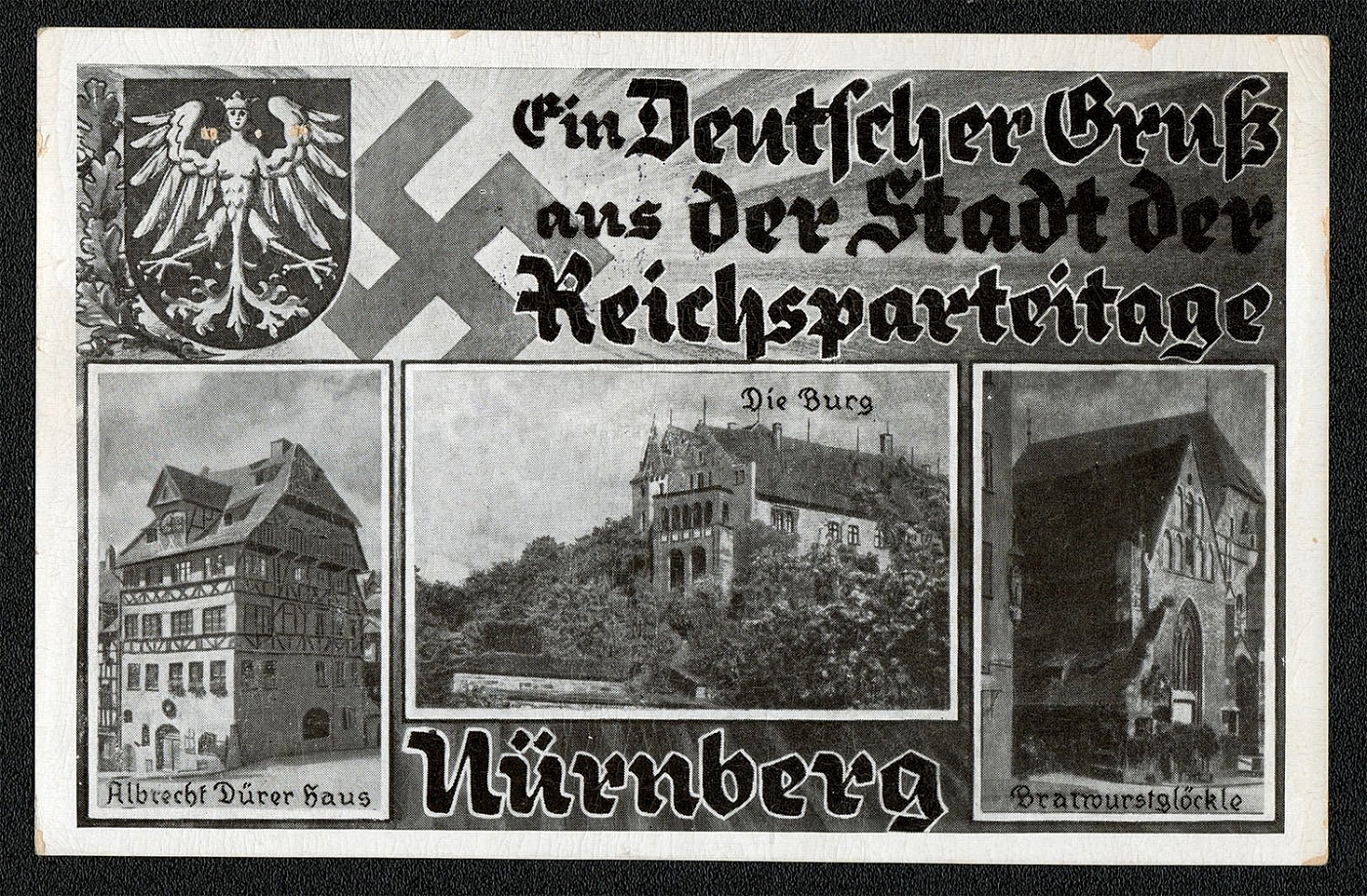
1935 Reich party rally of the NSDAP in Nuremberg, Albrecht Durer’s house, the Imperial Castle, and the Bratwurstglockle, a “Beer Restaurant”
This Nurnberg Bildpostkarte depicts Albrecht Durer’s house, the Imperial Castle, and the Bratwurstglockle, a “Beer Restaurant” famous for its sausages, that was built in 1313. Scott 465 canceled with the Postamt Nurnberg 2 Parteitagssonderstempel on 13 September 1935. The cancel is an example of the 22 mm single circle, * 2 * “flatfoot 2” variety. The card was printed and published by H. Lauschke, Leipzig, Gabelsbergerstr. la.
Sold for:
$45
Lot Number
Price
301
$20
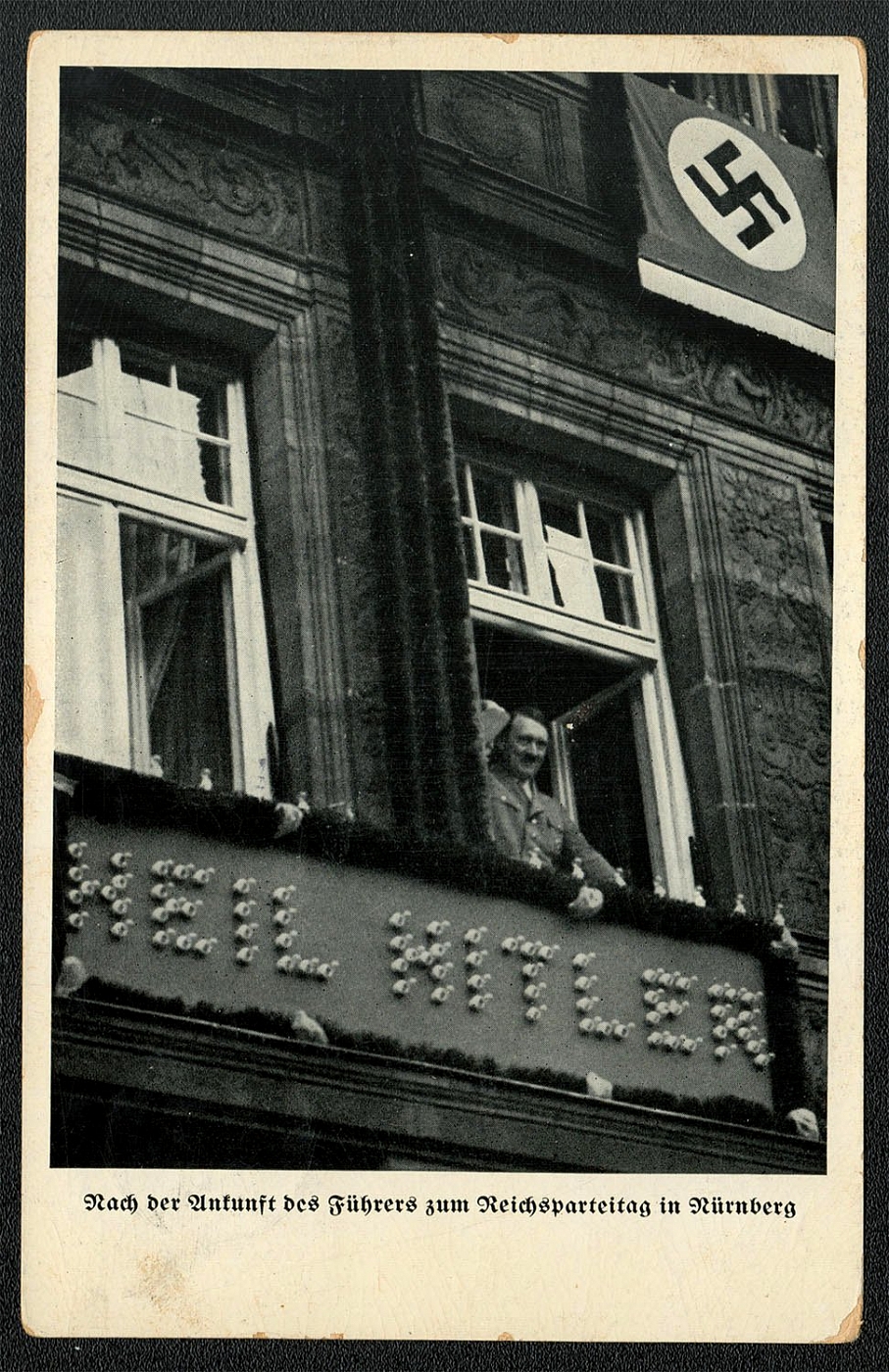
1935 Reich party rally of the NSDAP in Nuremberg, Hitler greeting the crowd
Reichsparteitag photocard card picturing Hitler greeting the crowd fr om his suite in the “Deutscher Hof’ Hotel. Franked with the 6 Rpf value of the 1935 Reichsparteitag issue (Sc 465). Postally used and mailed from Postamt 2 on 13 September 1935 wh ere it received the “2 star” machine cancel.
Sold for:
$20
302
$30
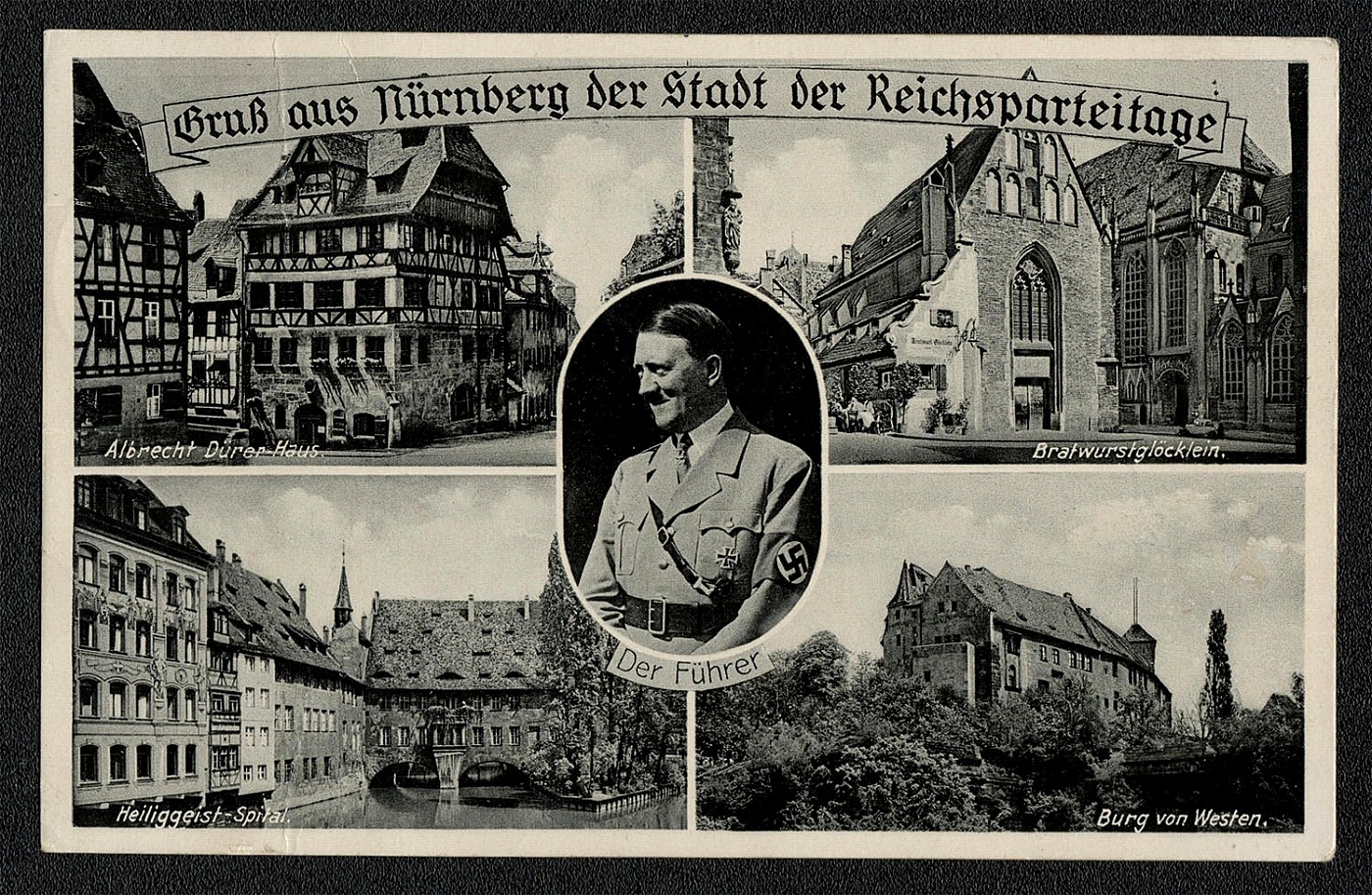
1935 Reich party rally of the NSDAP in Nuremberg, Albrecht Diirer’s house, a western view of the Imperial Castle, the Holy Ghost Hospital, and the Bratwurstglocklein, a “Beer Restaurant”
This Nurnberg Bildpostkarte depicts Albrecht Diirer’s house, a western view of the Imperial Castle, the Holy Ghost Hospital, and the Bratwurstglocklein, a “Beer Restaurant” famous for its sausages, with Der Fuhrer in the center of the collage. Scott 465 canceled with the Postamt Nurnberg 2 Besonder Handstempel on 14 September 1935. This special hand stamp was basically the same as that used in 1934, but the “b” in the 1935 cancel is known to have used in the main post office (Nurnberg 2). The handstamps seem to be found almost always only on commemorative postcards, and on covers bearing the special commemorative postage stamps This may indicate that they were reserved to provide favour cancellation on philatelic mail presented by collectors and souvenir hunters at special philatelic counters set up for the purpose in each post office. Inasmuch as most often the handstamp is found on unaddressed cards and covers, a postally used item such as this has greater value.
Sold for:
$30
303
$30
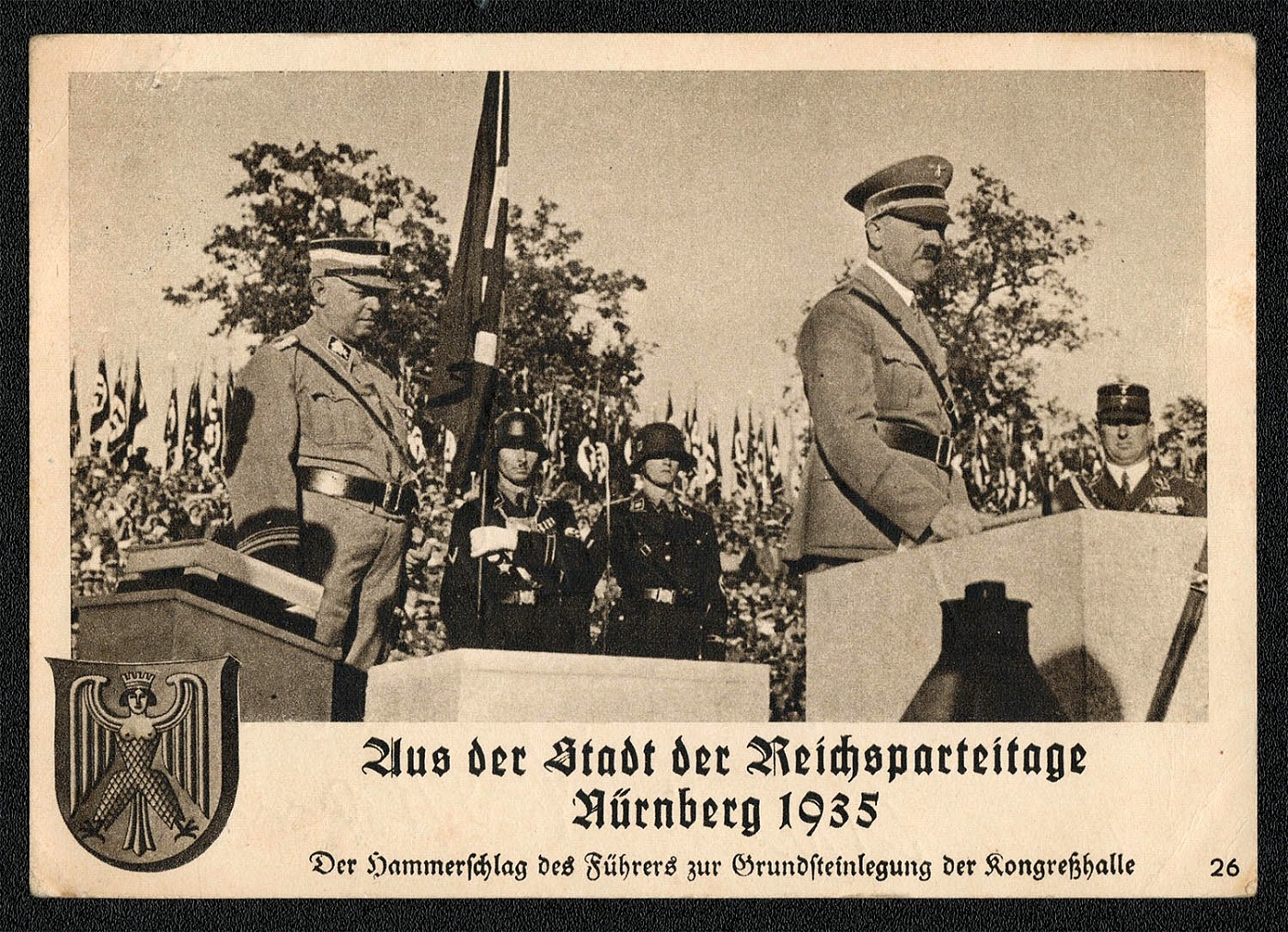
1935 Reich party rally of the NSDAP in Nuremberg, The Leader’s hammer blow at the groundbreaking of the Kongresshalle
The Congress Grounds were built southeast of Niirnberg on a grandiose scale. By 1935 the Luitpold Arena was completed, and a Congress Hall for 60,000 spectators was under construction. “Further to the north of the stadium the processional avenue crossed an expanse of water in which the buildings would be reflected. Then, concluding the complex, came a square, bounded on the right by the Kongresshalle, which still stands, and on the left by a Kulturhalle meant specifically for Hitler’s speeches on cultural matters. “Hitler had appointed me the architect for all these buildings except the Kongresshalle, which had been designed in 1933 by Ludwig Ruff. He gave me a free hand with plans and execution and participated every year in a ceremonial cornerstone laying. “At the cornerstone laying of the Niirnberg Kongresshalle, Hitler saw me standing in the second rank. He interrupted the solemn ceremonial to extend his hand to me. I was so overwhelmed by the unusual sign of favor that I let my own hand, raised in salute, fall with a loud smack on the bald head of Julius Streicher, the Gauleiter of Franconia, who stood just front of me.” This dated Nurnberg rally card is franked with the 1935 Reichsparteitag issue (Sc 465). It was mailed from Postamt 2 on 15 September 1935. It received the “3 star” machine cancel.
Sold for:
$30
304
$20
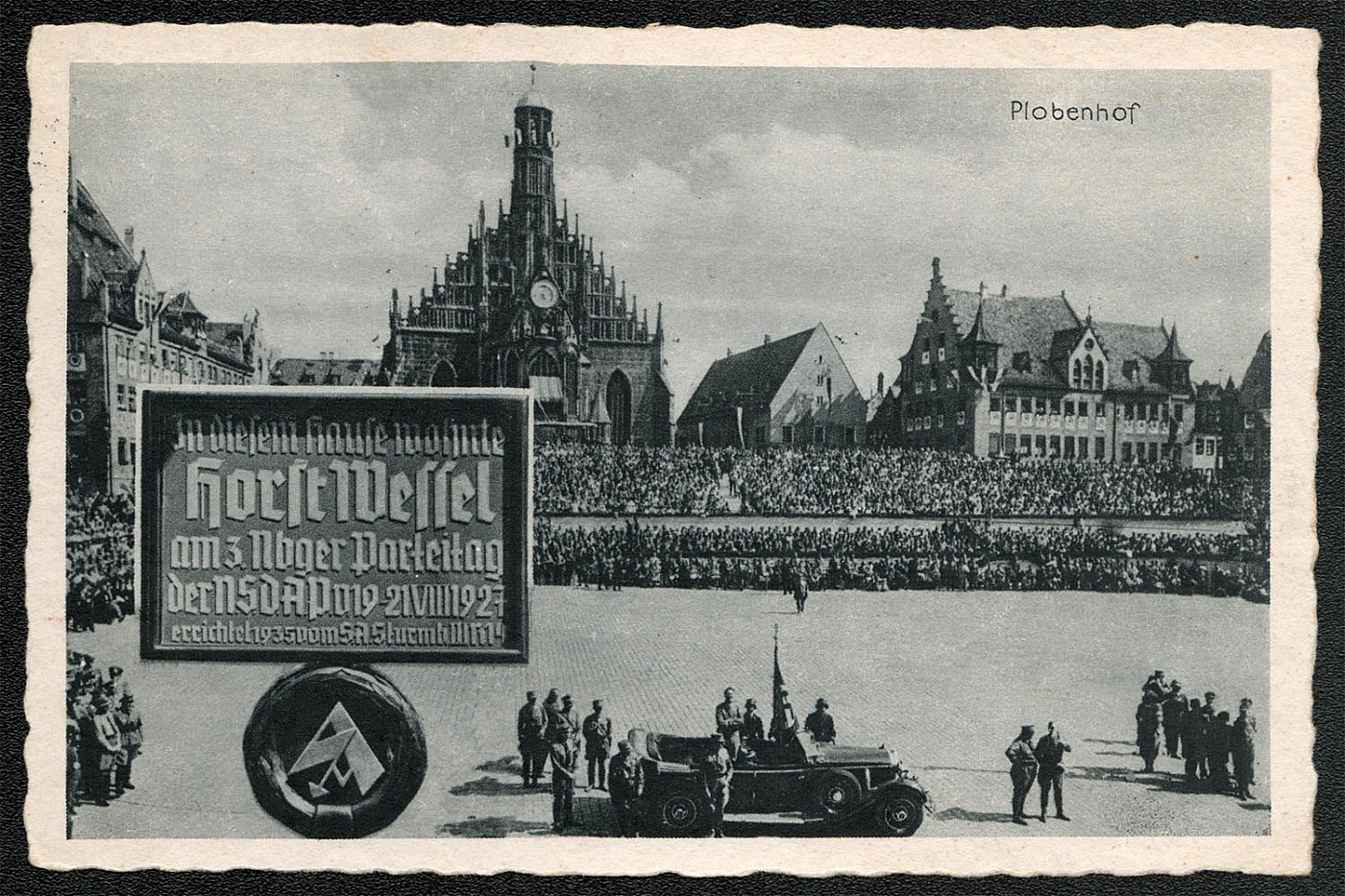
1935 Reich party rally of the NSDAP in Nuremberg, Horst Wessel Panel
1935 Reich party rally of the NSDAP in Nuremberg, Horst Wessel Panel
Sold for:
$20
305
$350

1935 Reich party rally of the NSDAP in Nuremberg, Membership Pass with Baldur von Schirach’s autograph
The above 1935 Reichsparteitag Membership Pass with its perfectly struck green handstamp is by itself a desirable Party Rally artifact. Baldur von Schirach’s autograph acquired a month later significantly enhances its value. The Membership Pass was given Hanns Klaus Meyer of the Hitlerjugend, born 6 March 1920. At the time of the 1935 Reichsparteitag, he was residing at 21 Untere Schiede, Limburg (Lahn). He listed his Confession of Faith (Glaubensbekenntnis) as German. * The Hitlerjugend, of which he was a Region 13 (Gebiet 13) member, provided his Hospital Insurance (Krankenhilfe). *The Langenscheidt Standard Dictionary defines Glaubensbekenntnis as “creed” or “confession”. The National Socialists, however, gave this word additional meaning beginning with Hitler’s Mein Kampf. In that book he speaks of developing a political creed. The National Socialists were also favoring the “German Christian” movement in the mid-1930s in an attempt to indoctrinate the Protestant Churches.
Sold for:
$350
306
$40
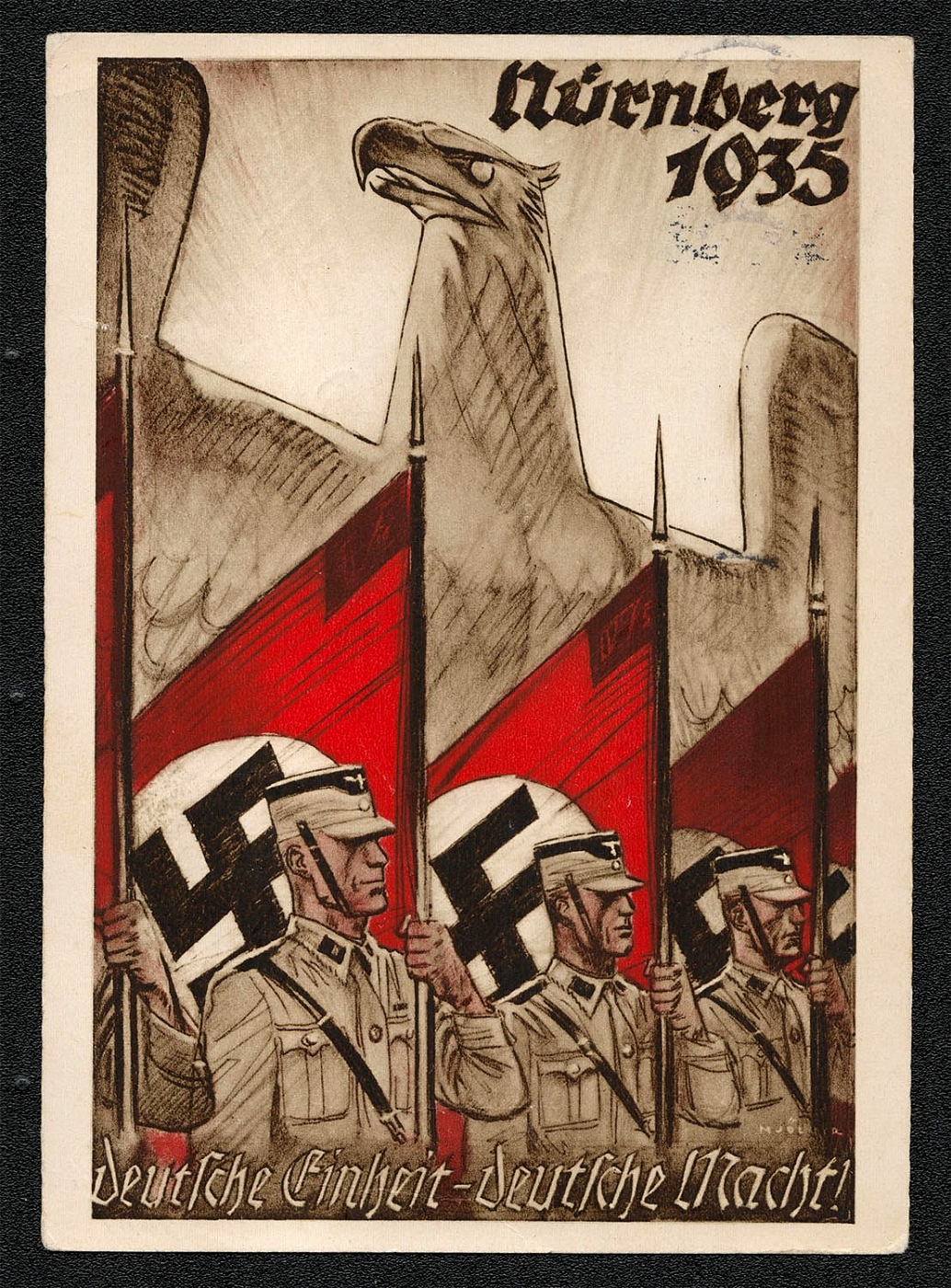
1935 Reich party rally of the NSDAP in Nuremberg,German Unity - German Might!
Designed by Hans Albert Schweitzer (Mjolnir). Published by Verlag Frz. Eher Nachf., Miinchen 2. Copperplate by Brend’amour, Simhart & Co., Munich.
Sold for:
$40
307
-

1935 Reich party rally of the NSDAP in Nuremberg, Eagle and Flags over Niirnberg Castle, RARE !
Designed by Hans Friedmann Published by Heinrich Hoffmann, Miinchen (Nr. 448). In 1935 Hoffmann started to issue color artists cards commemorating the Rallies showing representatives of the NSDAP paramilitary formations and other symbolic designs. The above is one of three known color cards published for the 1935 Reichsparteitag.
Unsold
308
$35
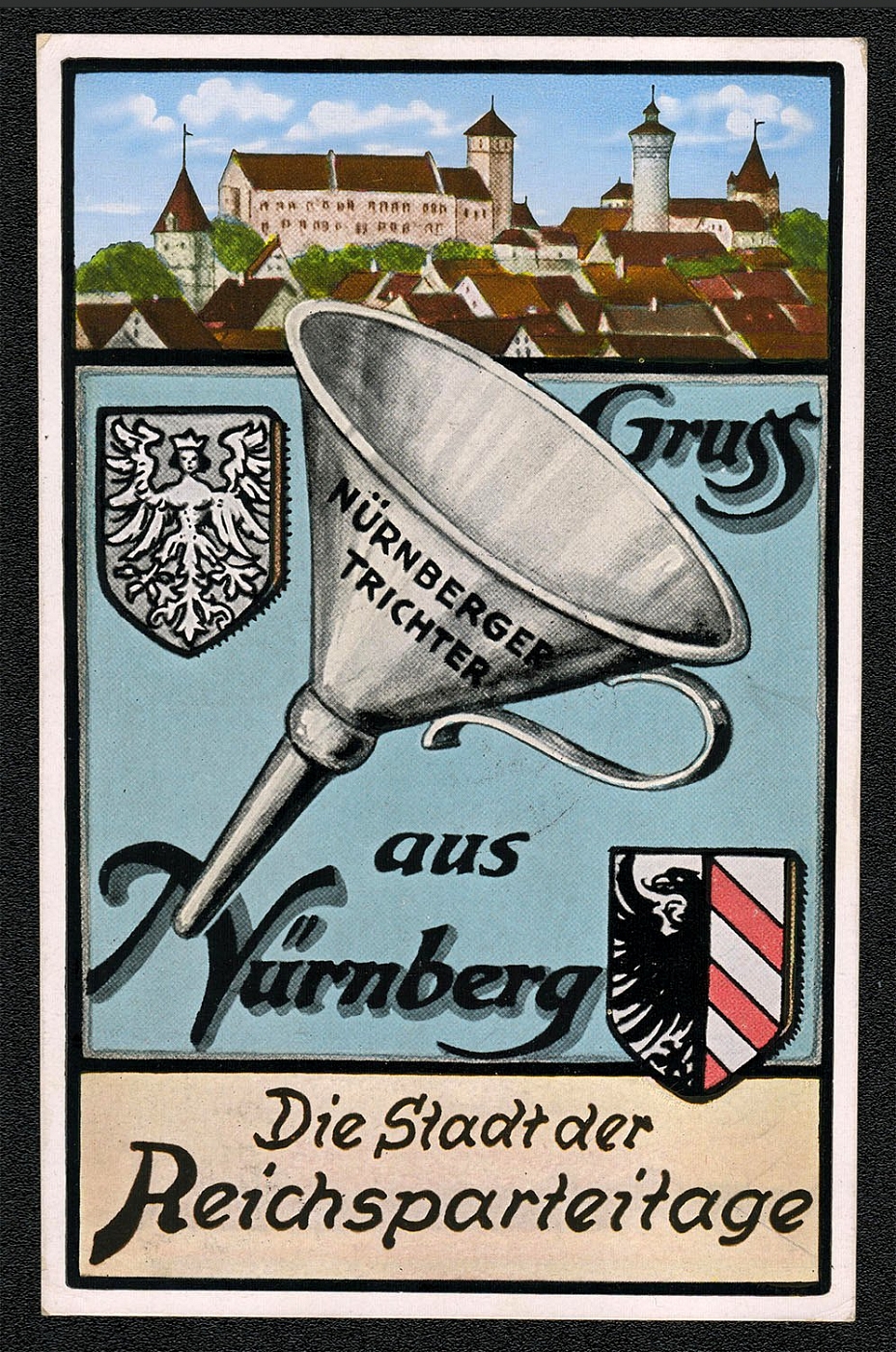
1935 Reich party rally of the NSDAP in Nuremberg, The Nuremberg funnel
Depicted is the Nurnberger Trichter (“Nurnberg funnel”) with a view of the Old City in the background. The origin of the funnel as a folklore symbol is obscure. Other postcards have shown the funnel being used to pour a potion into a young man, with the text: “Der Nurnberger Trichter: Sicher and schnel —Macht er die Kopfe hell!” This translates: The Nurnberg funnel: Surely and quickly—it makes heads bright!” In addition, the figurines on some Nurnberg beer steins show a jester using a funnel to pour something into a fool’s head. View card published by Anton Hilbert Kunstverlag of Nurnberg franked with Sc 465 and mailed 14 September 1935 at 7:30 P.M. from Postamt Nurnberg 2. The official publicity slogan cancellation is of the two star, “flatfoot two” variety. More significantly, the card bears the annahmestempel (acceptance cachet) used on the postal coach on the Gau Sachsen march from Hof to Nurnberg, 4-10'h September 1935.
Sold for:
$35
309
-
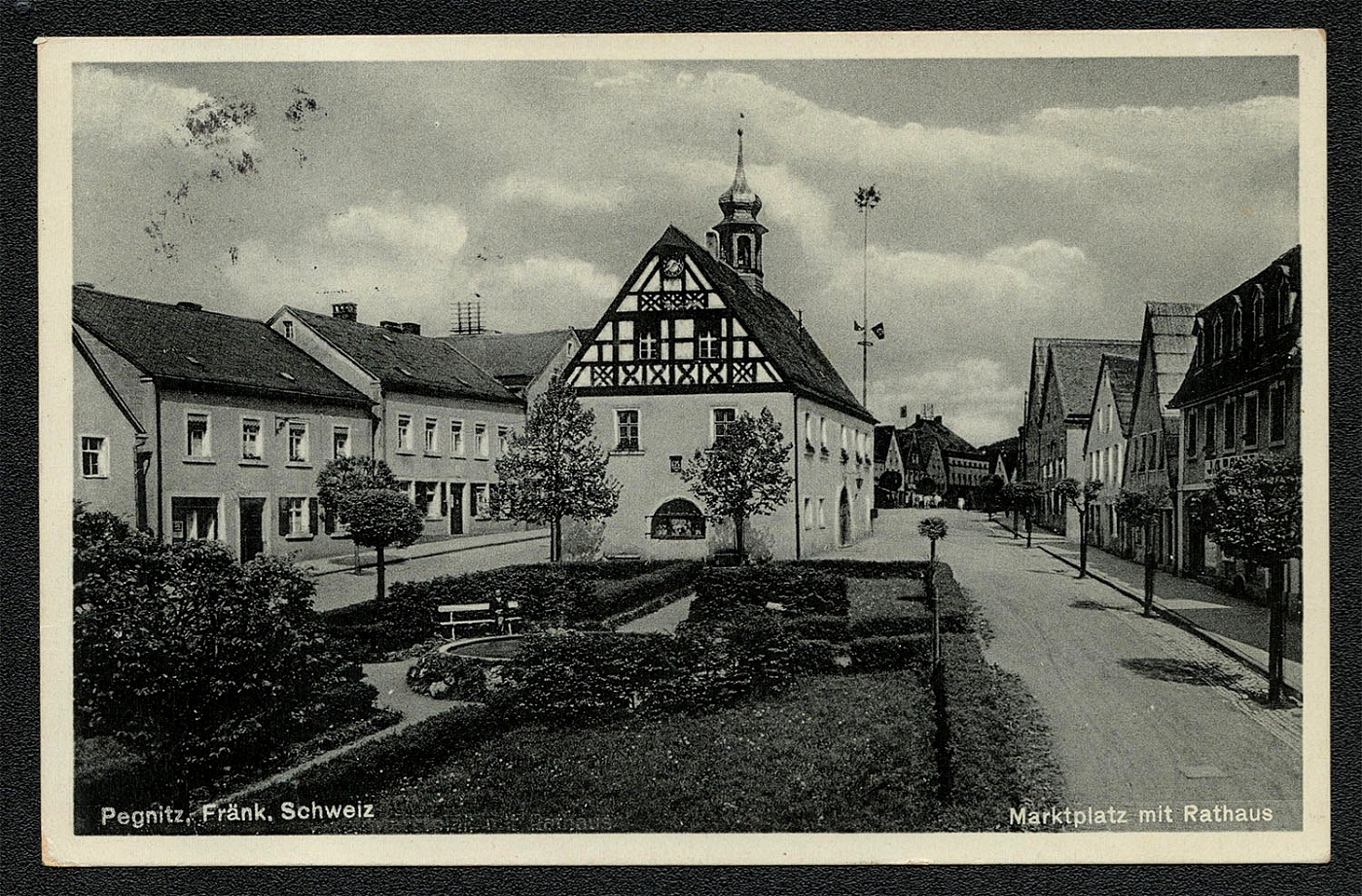
1936 Reich party rally of the NSDAP in Nuremberg, Marketplace with Town Hall
7 September 1936 Gau Sachsen March Nurnberg The route of the March, which began on 3 September, was the same as that of the previous year. On this occasion, however, the participants set off in two separate columns each accompanied by its own postal coach. The coaches were equipped as sub-offices of Postamt Dresden 7. The Saxon contingents arrived at Nurnberg on the 7th. The coaches were parked in the units’ camp and served as temporary post offices until the end of the Rally. Approximately 16 miles south of Bayreuth and 32 miles northwest of Nurnberg, Pegnitz lies in the Frunkische Schweiz a slightly undulating tableland 1600-1900 feet above sea level, furrowed to a depth of 650-1000 feet by tortuous and precipitous valleys with curious rock formations. A wealth of varied scenery is afforded by the lush green dales crowned with picturesque little towns and old castles. Pegnitz was along the route of Gau Sachsen March from Hof to Nurnberg. Geographical details excerpted from Baedeker’s Southern Germany, 1929. Photocard published by Verlag Photohaus Schliiter, Pegnitz.
Unsold
310
$10

1936 Reich party rally of the NSDAP in Nuremberg, City views
Multiple view card franked with Sc 479 with the Nurnberg- die Stadt der Reichsparteitage slogan cancellation mailed from Postamt Nurnberg 2 on 9 September 1936. Nurnberg view card franked with Sc 479 with the Nurnberg- die Stadt der Reichsparteitage slogan cancellation. A new single circle date stamp, roughly 28 mm in diameter, was used in 1936. Four varieties (“a,” “c,” “e,” and “h”) were initially installed. This “c” variety was mailed from Postamt Niirnberg 2 on 9 September 1936.
Sold for:
$10
311
-
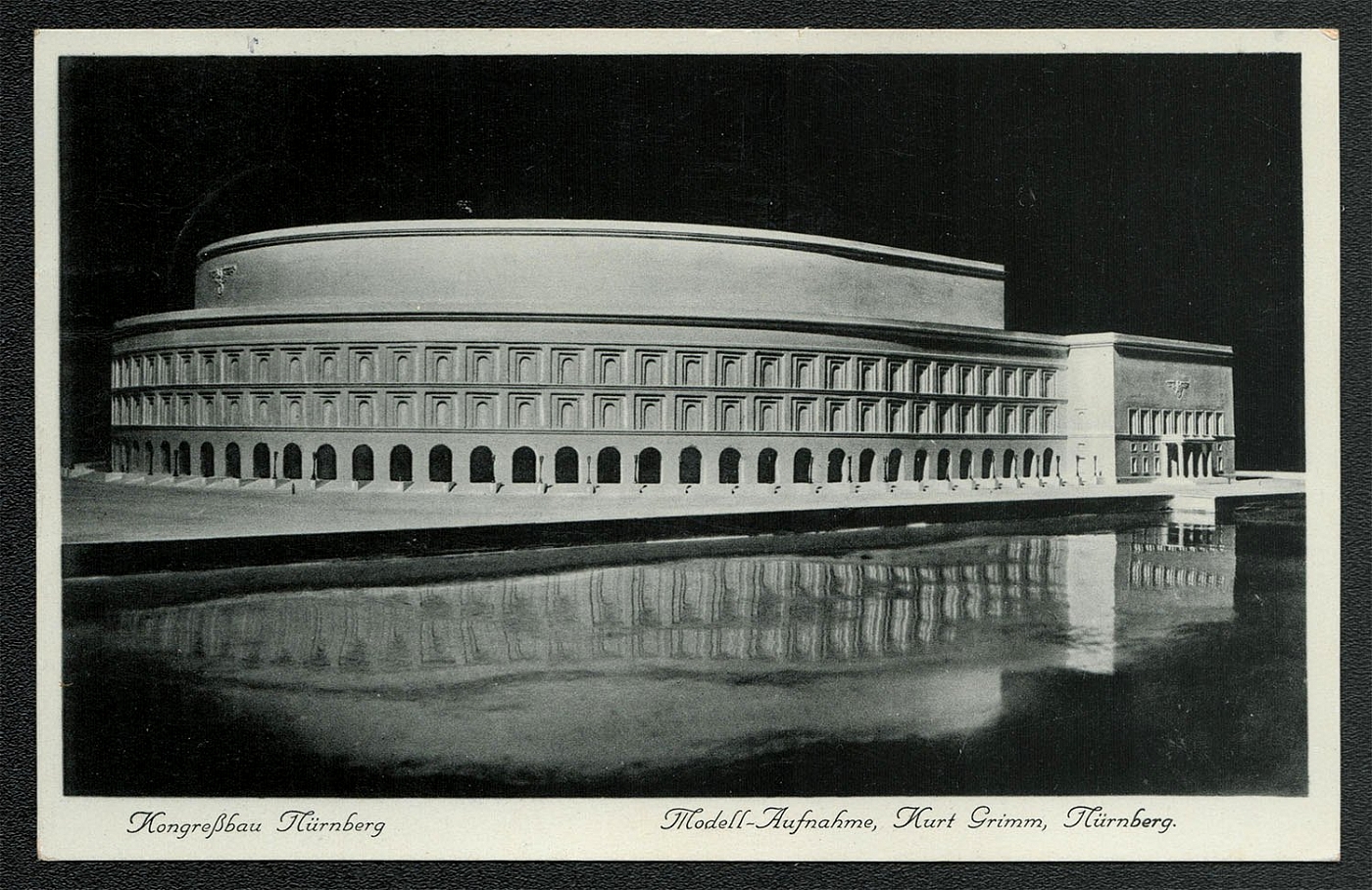
1936 Reich party rally of the NSDAP in Nuremberg, Congress Building
Hitler appointed Albert Speer the architect for Luitpoldfesthalle, the Zeppelinfeld Ehrentribiine, the Luitpoldarena Ehrentribiine, and the Kongressbau, “all these buildings except the Kongresshalle, which had been designed in 1933 by Ludwig Ruff. He gave me a free hand with plans and execution and participated every year in a ceremonial cornerstone laying. However, these cornerstones were subsequently moved to the municipal buildings and ground yard to wait until the building had made further progress and they could be incorporated in the wall. At the laying of the cornerstone for the stadium on 9 September 1937, Hitler solemnly shook hands with me before the assembled party bigwigs. ‘This is the greatest day of your life!’ Perhaps I was something of a skeptic even then, for I replied: ‘No, not today, my Fuhrer, but only when the building is finished. The Fuhrer laid the foundation stone for the Congress Building on 11 September 1935. Party Grounds view card franked with Scott 442 and posted 11 September 1936, one year to the day of the laying of the foundation stone. For the period of the Rally, 8-14 September, the main Nurnberg post offices were provided with special commemorative handstamps for use on the envelopes and post cards presented by philatelists and souvenir hunters. The handstamp was identical to that used in 1935 except an identifying letter appears below the date bridge. All in all, 24 different handstainps were allocated, but only a few receiving post offices have been identified. Unfortunately, “y” is unknown at this time.
Unsold
312
-
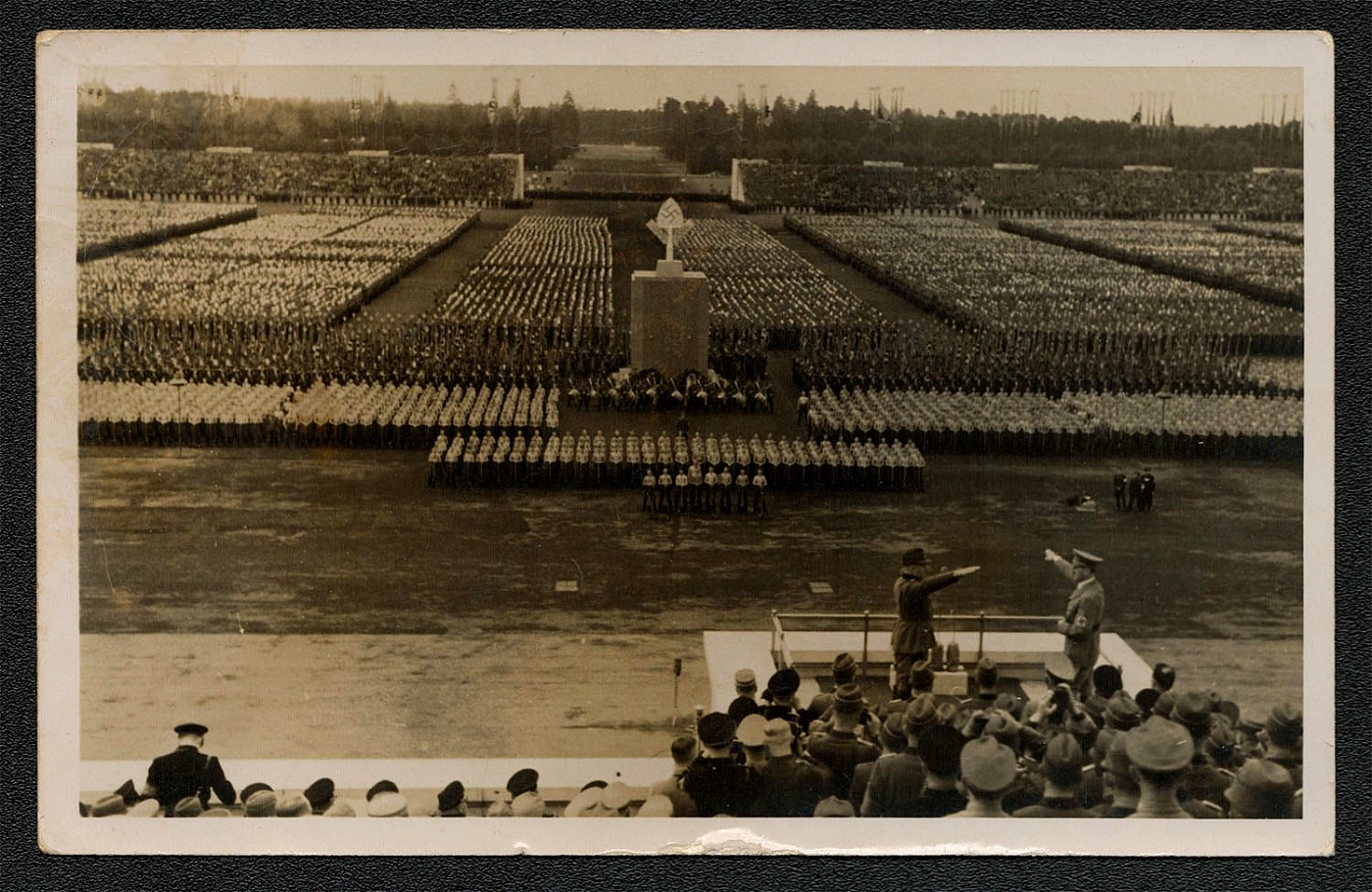
1936 Reich party rally of the NSDAP in Nuremberg, The Day of the Labor Service
Rally Card No. 86 published by LEONAR, franked with Sc 479 and postally used 12 September 1936. Rally Card No. 86 published by LEONAR and franked with Sc 479. Mailed from Postamt Nurnberg 2, 12 September 1936. The first 1936 slogan cancellation is the same as the 1935 design, a double circle date stamp with the identifying letter “u.” As in the earlier design, the divided shield with three complete shaded bars is on the left. It was used throughout 1936 in Postdmtern 1, 2 and 5.
Unsold
313
-
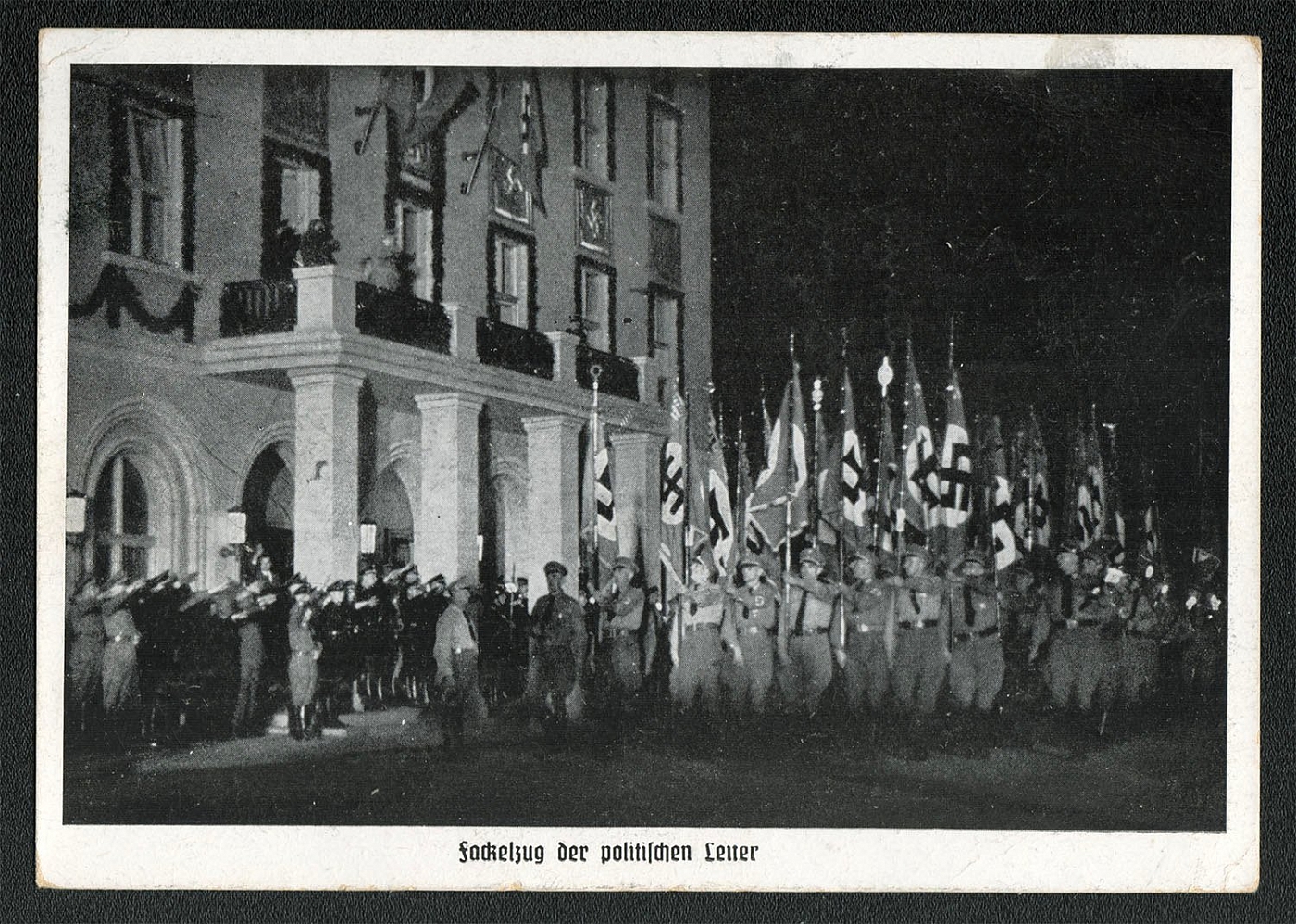
1936 Reich party rally of the NSDAP in Nuremberg, Torch Procession of the Political Leaders
Posted 12 September 1936 in Postamt Nurnberg 2. Greetings from Nurnberg, City of The Reichsparteitage Posted 12 September 1936 in Postamt Nurnberg 2. Franked with Scott 479. The 28-mm single circle cancel with the identifying letter “c” for Nurnberg 2 is the type with the hakenkreuz below the date bridge.
Unsold
314
$30
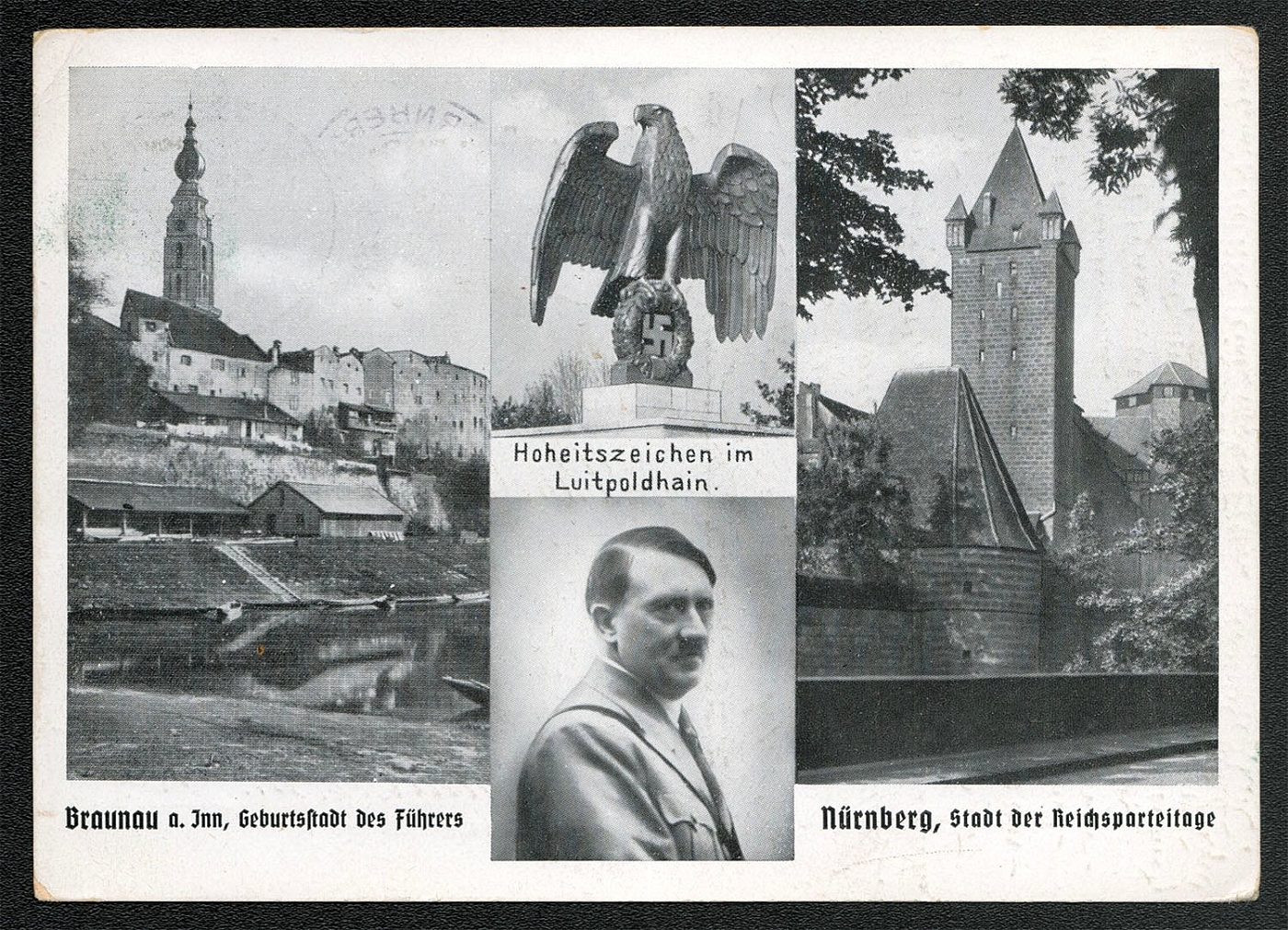
1936 Reich party rally of the NSDAP in Nuremberg, Braunau am Inn The Fuhrer’s Birthplace
Postamt Nurnberg 2 13 September 1936. The slogan cancellation, similar to the 1935 design, contains a double circle date stamp with the identifying letter “u.” As in earlier designs, the divided shield with three complete shaded bars is on the left.
Sold for:
$30
315
$20
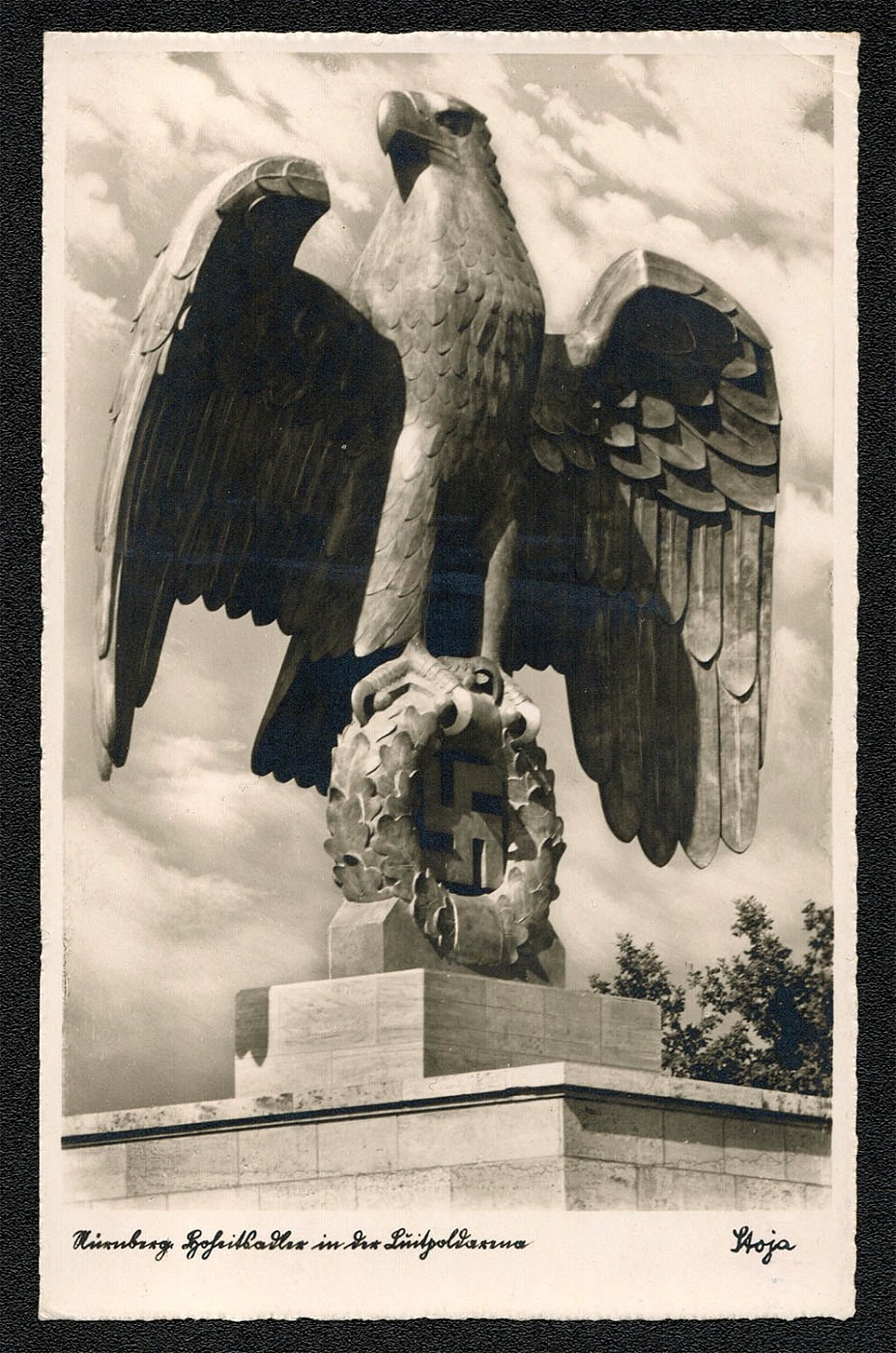
1936 Reich party rally of the NSDAP in Nuremberg, Nuremberg national emblem in the Luitpoldarena
Unused photo card (Nr. 5107a) published by Stoja-Verlag Paul Janke, Nurnberg-A.
Sold for:
$20
316
$30
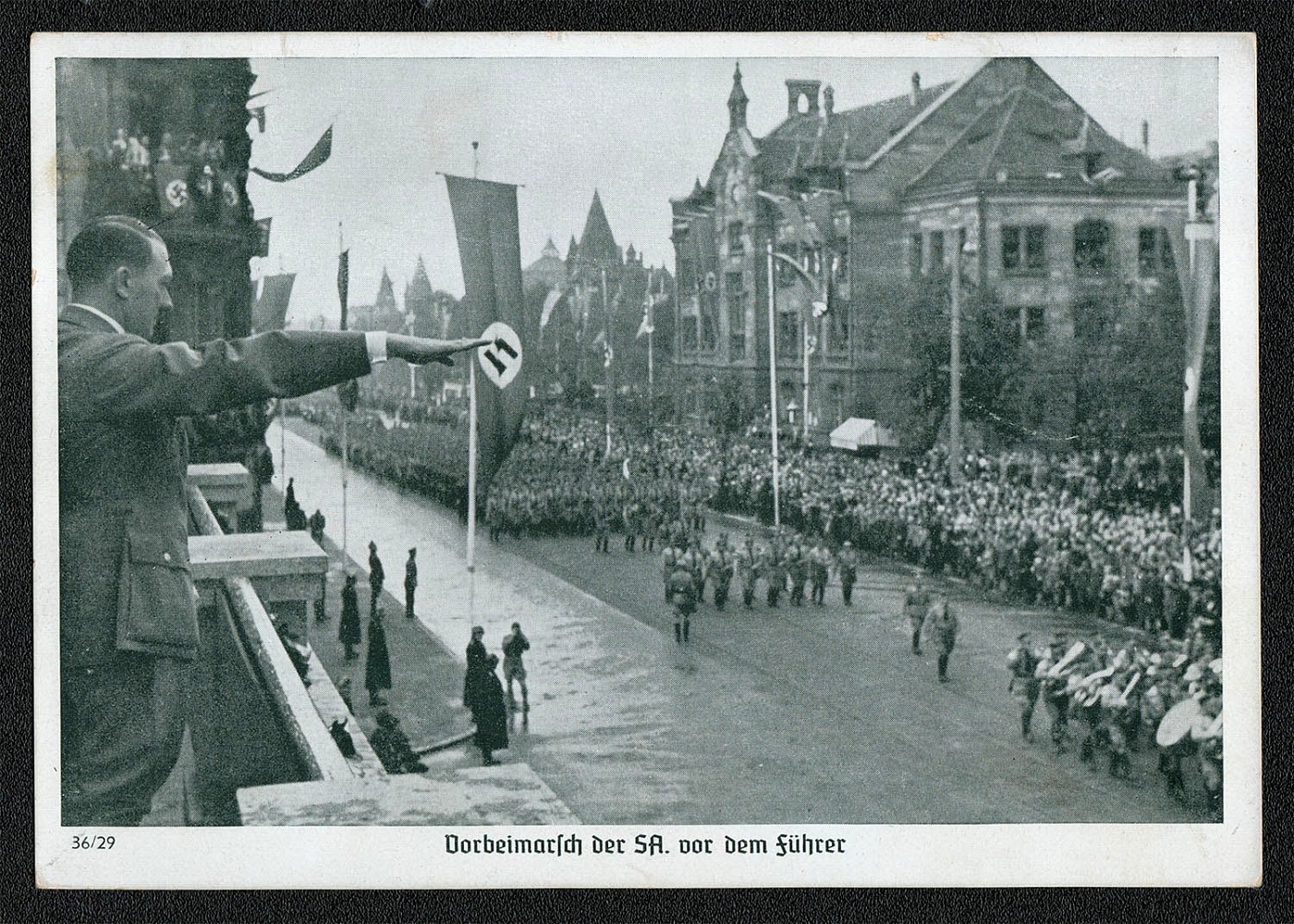
1936 Reich party rally of the NSDAP in Nuremberg, The SA Marches before the Fuhrer
Heinrich Hoffmann Photo Card 36/29 sent from Nurnberg to France on 14 September 1936. Hoffmann Photo Card 36/29 sent from Nurnberg to France on 14 September 1936. The commemorative handstamp in use from 8-14 September was identical to that used in 1935, but 24 different identifying letters were inserted in the section below the date bridge. The letter “o” was allocated to Postamt Nurnberg 2.
Sold for:
$30
317
$55
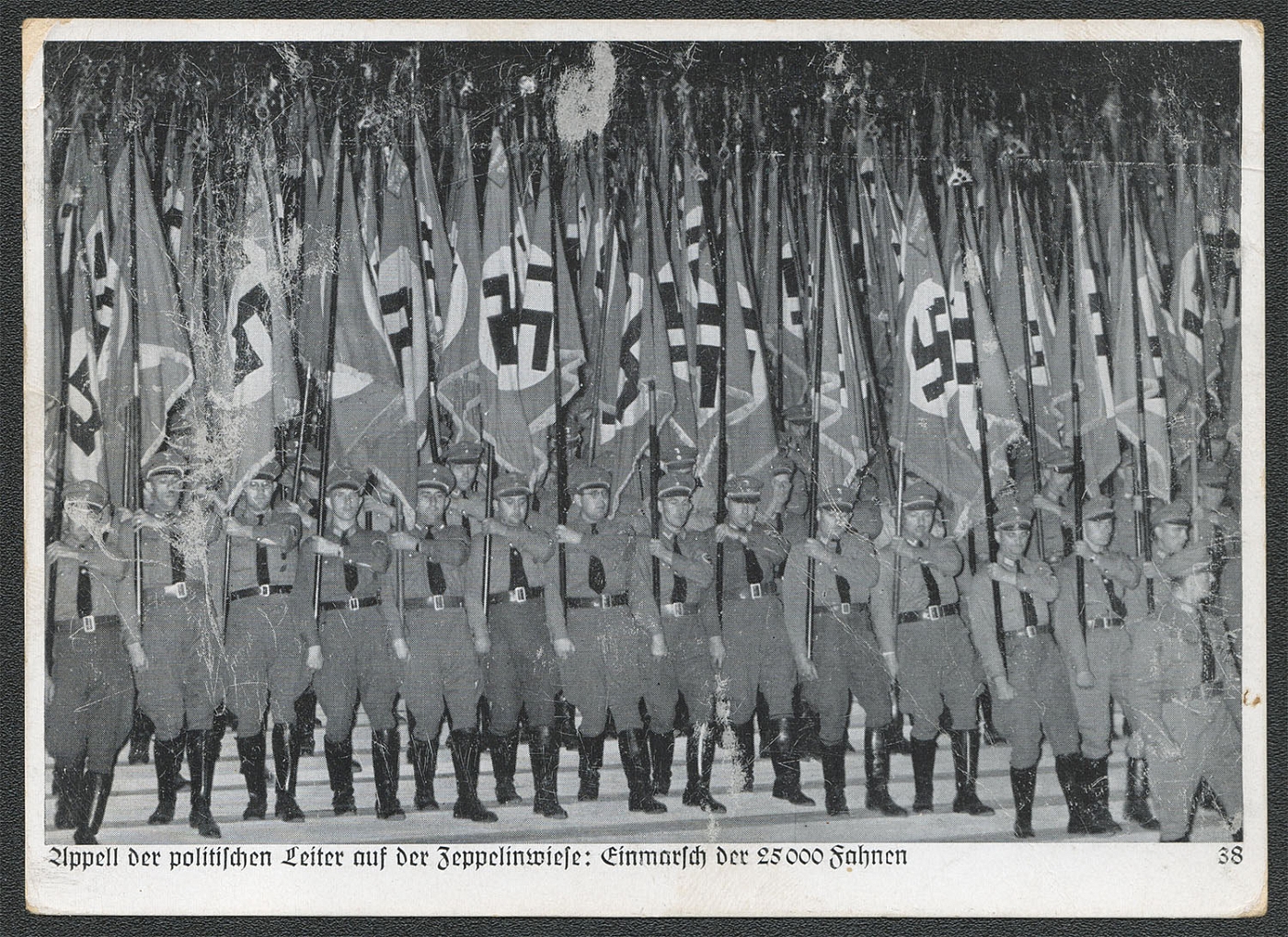
1936 Reich party rally of the NSDAP in Nuremberg, The March of 25,000 Flags
The Roll Call of Political leaders on the Zeppelinwiese. the March of 25,000 Flags Mailed from Postamt Nurnberg 2, 14 September 1936. Reichsparteitag card franked with Sc 479 with the single circle date stamp, roughly 28 mm in diameter, first used in 1936. Four varieties (“a,” “c,” “e,” and “h”) were initially installed. This “c” variety was mailed from Postamt Nurnberg 2 on 14 September 1936.
Sold for:
$55
318
$16
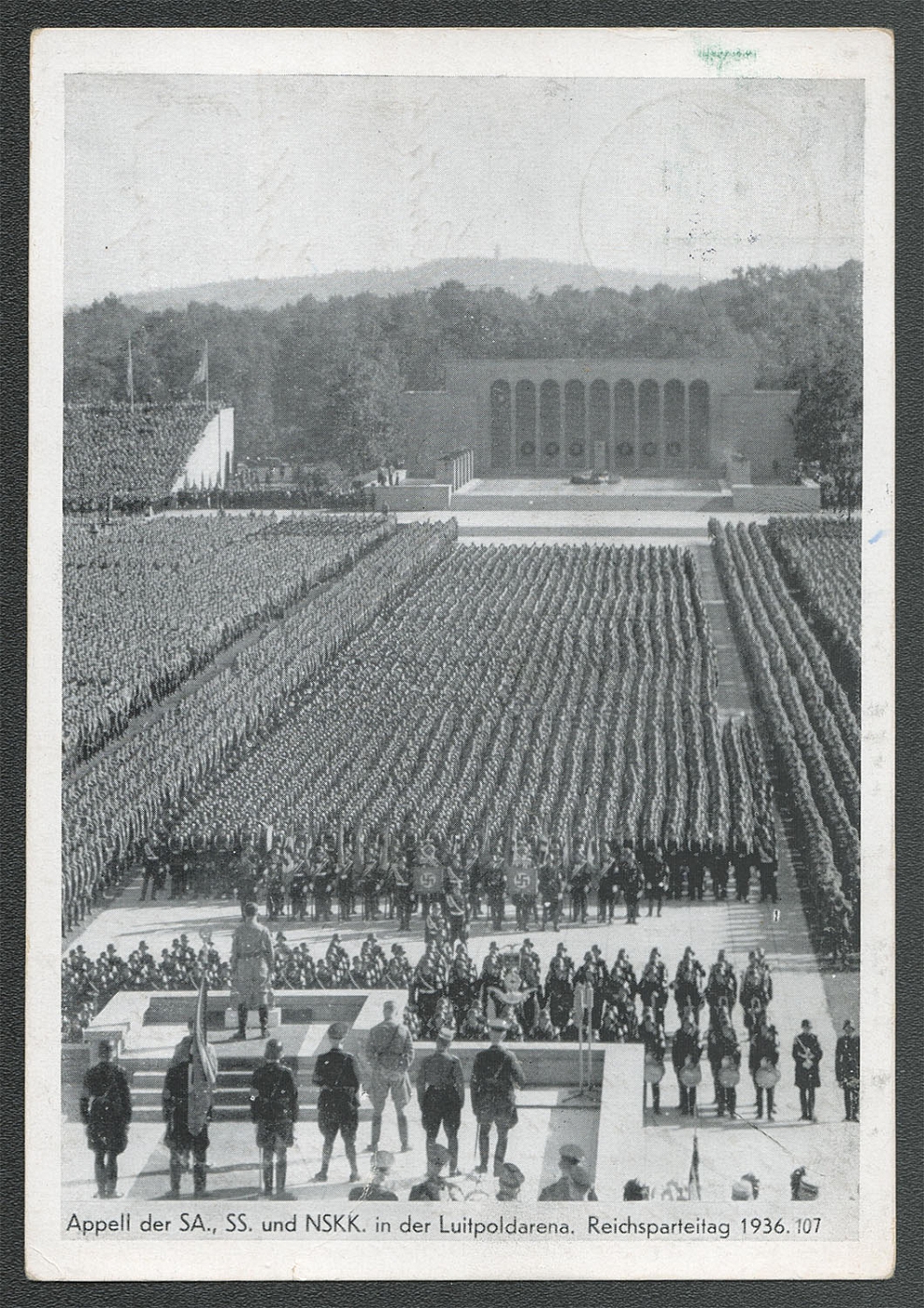
1936 Reich party rally of the NSDAP in Nuremberg, Roll Call of the SA., SS. und NSKK. in the Luitpold Arena
Rally photo card franked with Sc 479 with the Nurnberg- die Stadt der Reichsparteitage slogan cancellation. A new single circle date stamp, roughly 28 mm in diameter, was used in 1936. Four varieties (“a,” “c,” “e,” and “h”) were initially installed. This “a” variety was mailed from Postamt Nurnberg 2 on 15 September 1936.
Sold for:
$16
319
$25
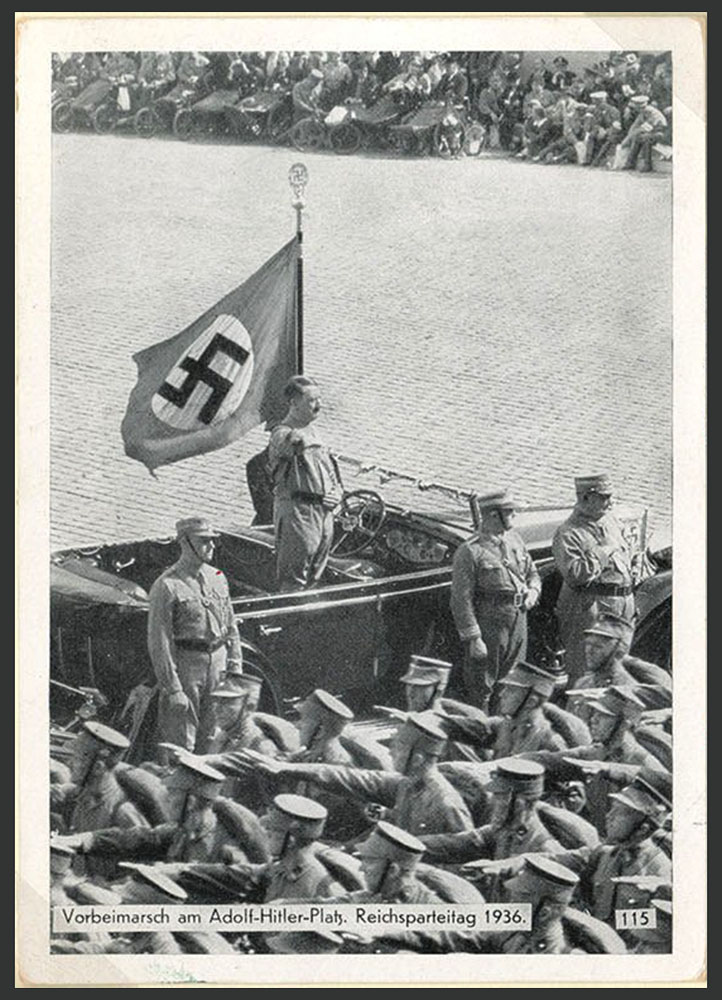
1936 Reich party rally of the NSDAP in Nuremberg, Passing in review on the Adolf Hitler Plaza
Nurnberg 2 date stamp used. Mailed on 15 September 1936. Photo presumably taken in 1935. Published by Verlag Intra, Nurnberg and printed by Noris-Verlag G.m.b.H., Nurnberg.
Sold for:
$25
320
-
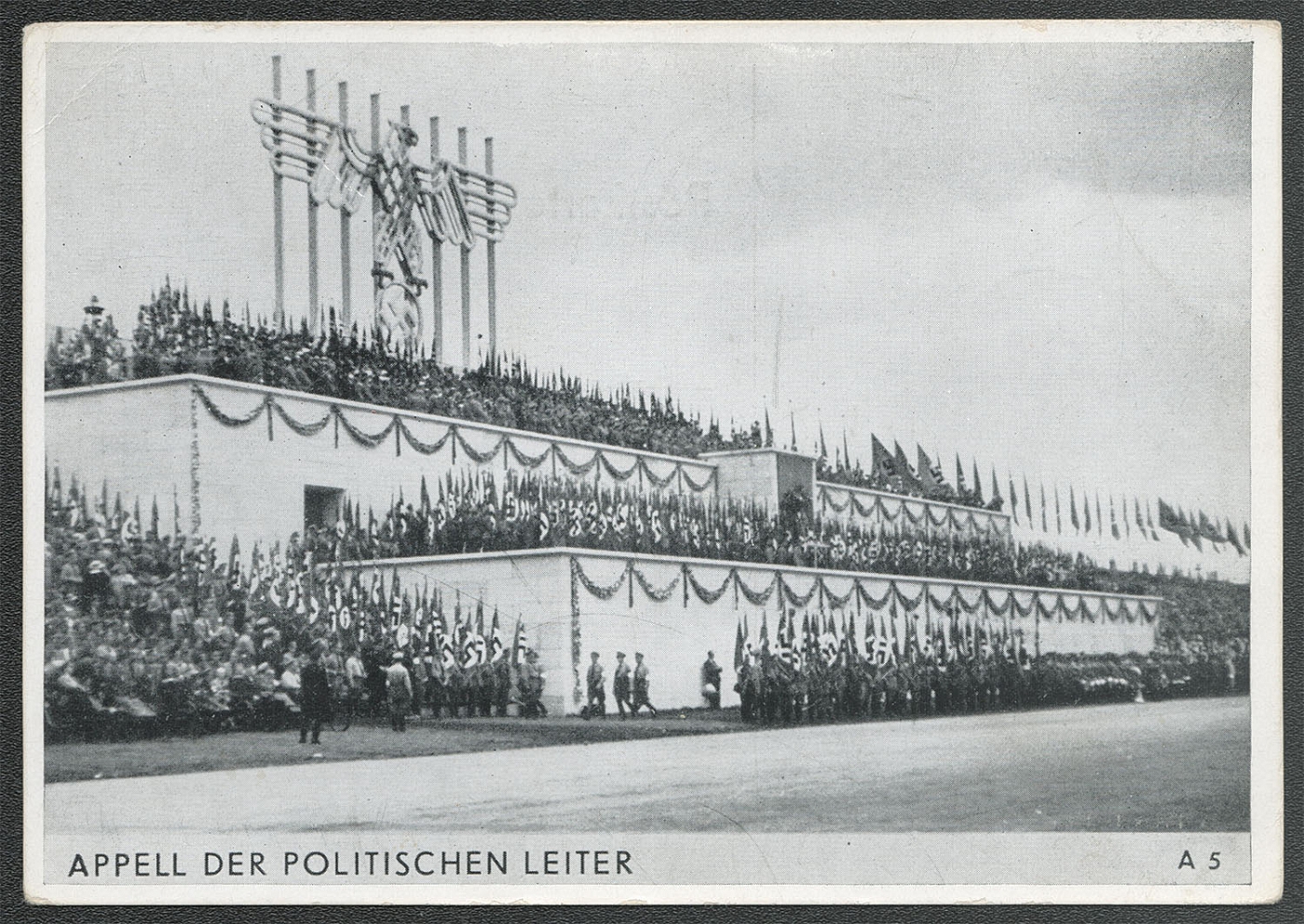
1936 Reich party rally of the NSDAP in Nuremberg, Roll Call of the Political Leaders
This Reichsparteitag Postkarte was published by Verlag Intra, circa 1936, and depicts the main grandstand at the Zeppelinfeld in 1935. Included in Speer’s first commissions to design permanent structures for the Rallies was the design of the backdrop for the Zeppelinfeld as well as the Luitpoldhain. For the 1933 Rally, the main grandstand was constructed of wood. Behind it was attached a huge openwork eagle with a wingspan of 100 feet. The whole edifice looked, and was, temporary. A start on permanent buildings began in early 1935 and by the time of the Rally the main seating banks had been built, although the colonnade behind it had not. Consequently, another large eagle similar to those used in 1933 and 1934 was mounted on top of the tribune.
Unsold
321
$60
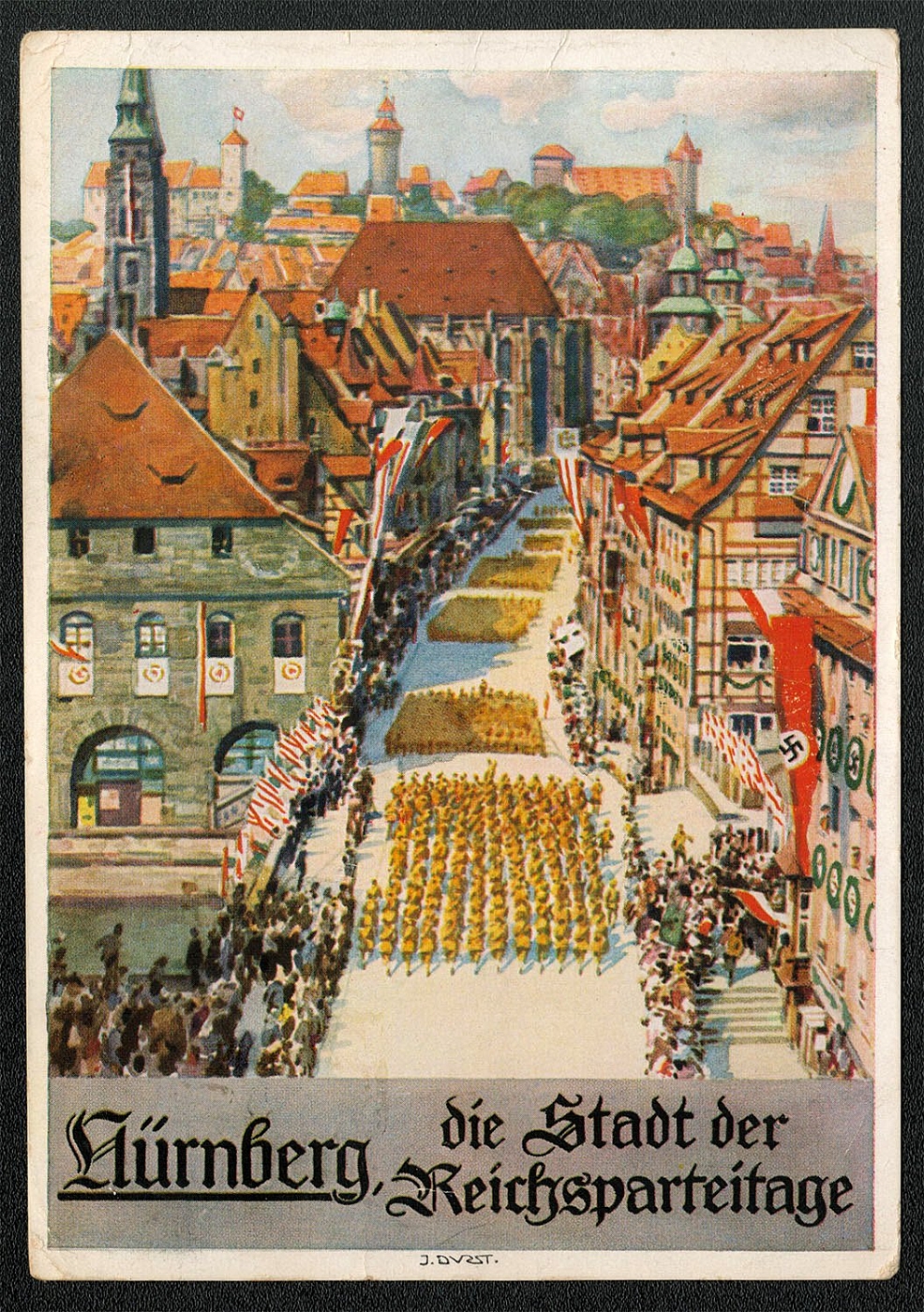
1936 Reich party rally of the NSDAP in Nuremberg, Procession through the city streets
Full color artist’s card designed by J. Dvrst. Published by Verlag Intra. Nurnberg. Posted in Postamt Nurnberg 2 on 12 September 1936. Artist’s card franked with Sc 479 with the slogan cancellation. A new single circle date stamp, roughly 28 mm in diameter, was used in 1936. Four varieties were initially installed. This “a” variety was mailed from Postamt Nurnberg 2 on 12 September 1936.
Sold for:
$60
322
$35
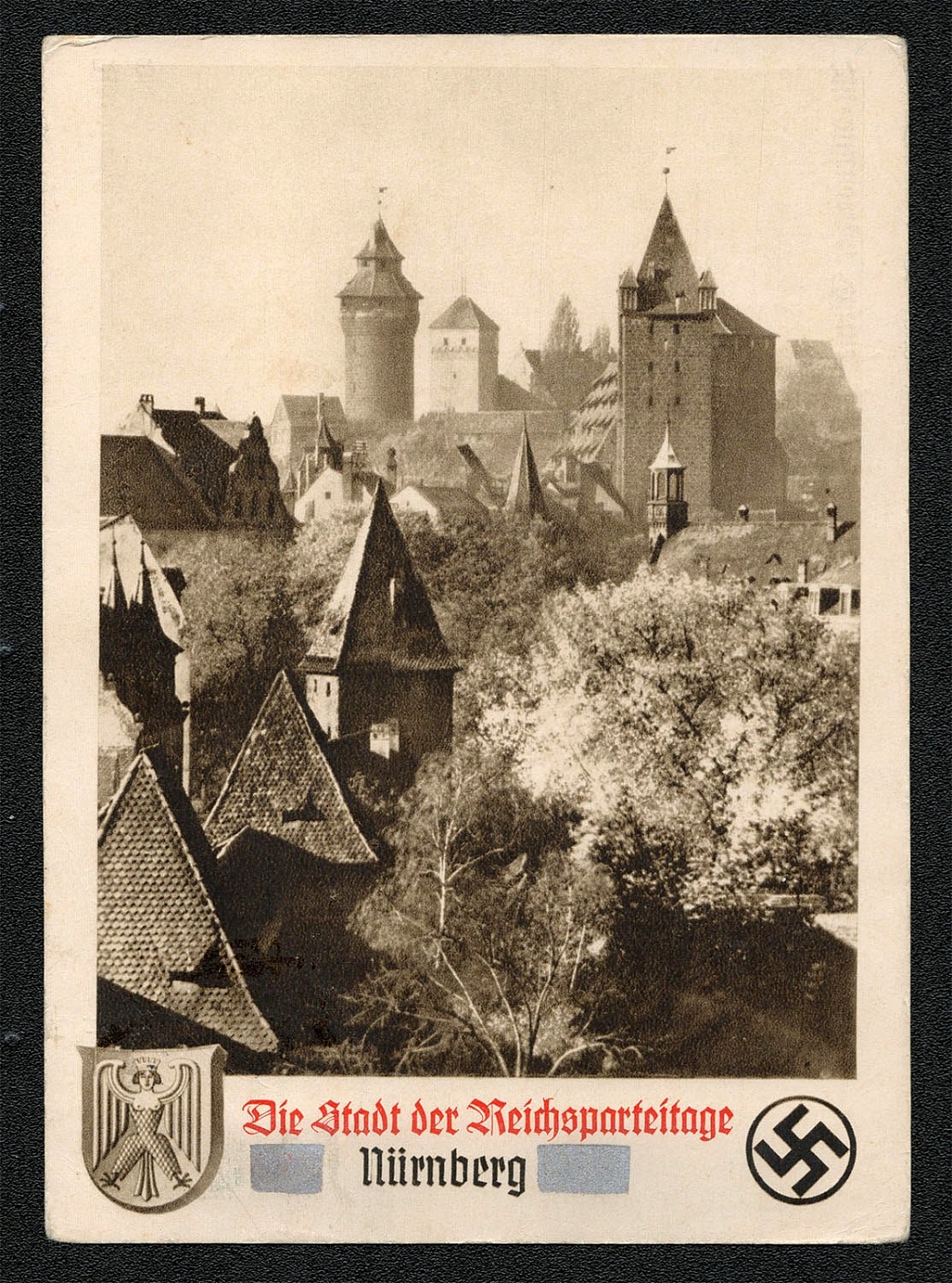
1936 Reich party rally of the NSDAP in Nuremberg, Old Nuremberg Towers
Publisher: E. Wirthmann, Nurnberg (Reichskulturkamnier KB 110). Engraved copper plate printing: W. Tummels Buchdruckerei, Nurnberg. The right-hand silver rectangle beside the word Nurnberg on this card obliterates the date 1935. (The left-hand rectangle was put in for balance.) Superficially a view card, disputably a Rally card. Posted 12 September 1936 in Postamt Nurnberg 2. Franked with Scott 479. The 28-inm single circle cancel with the identifying letter “c” for Nurnberg 2 is the type with the hakenkreuz below the date bridge. Published by E. Wirthmann, Nurnberg (Reichskulturkainmer KB 110). Engraved copper plate printing by W. Tummels Buchdruckerei, Niirnberg.
Sold for:
$35
323
$20
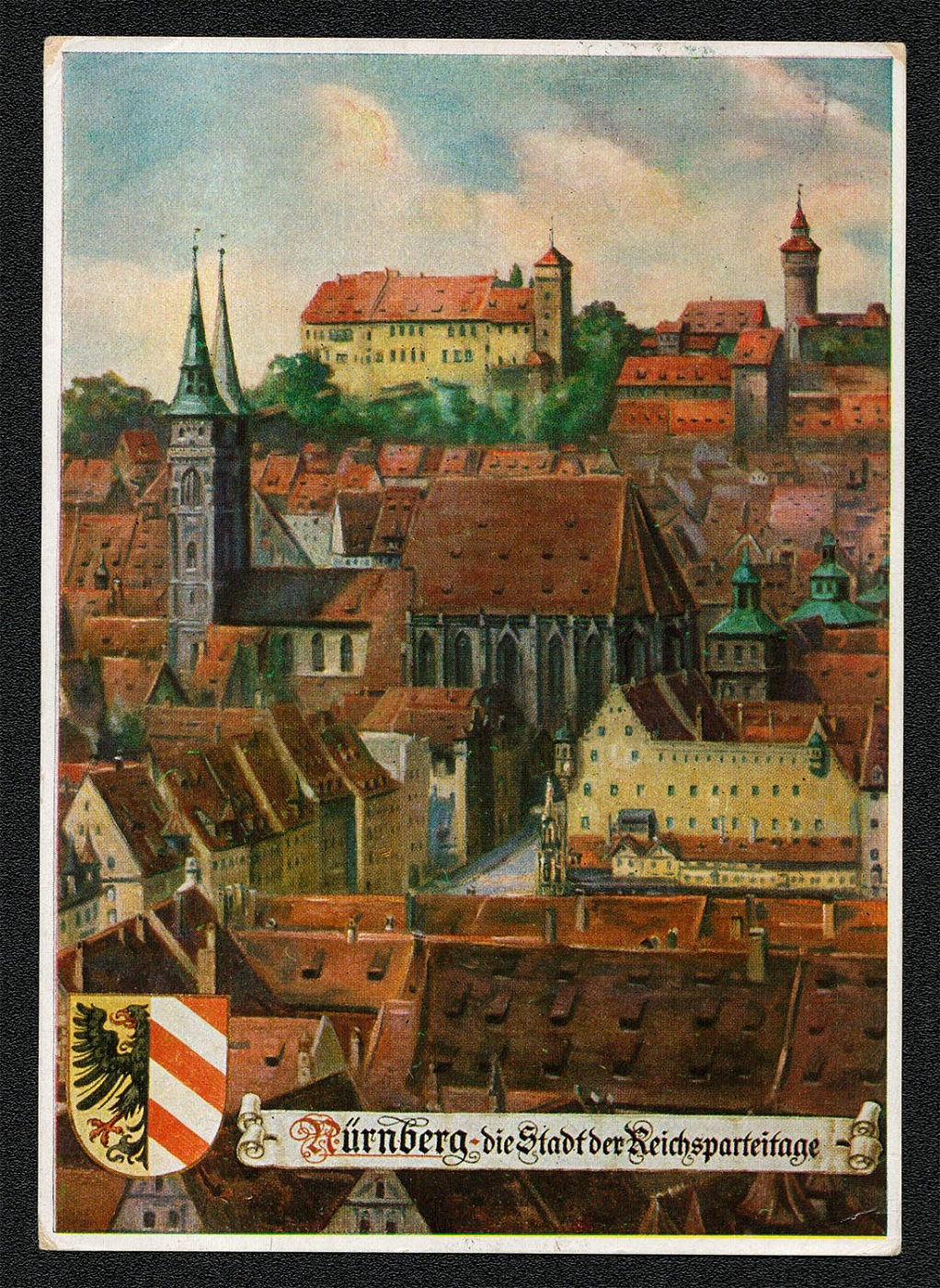
1936 Reich party rally of the NSDAP in Nuremberg, View of the Castle with St. Sebaldus Church
Full color artist’s card (Series 1) published by Wilhelm Serz, Nurnberg. After a painting by Kunz Weidlich. Mailed from Postamt Nurnberg 2 on 13 September 1936. Full color artist’s card franked with Sc 479. Posted 13 September 1936. The slogan cancellation is the same as the 1935 design, a 28-mm single circle date stamp with the identifying letter “a” set between the “N” of Nurnberg and the beginning of the slogan in the upper left-hand section of the date stamp. As in earlier designs, the divided shield with three complete shaded bars is on the left. It was only used in Postamt Niirnberg 2. additional varieties exist with the letters “c”, “e” and “h”.
Sold for:
$20
324
$30
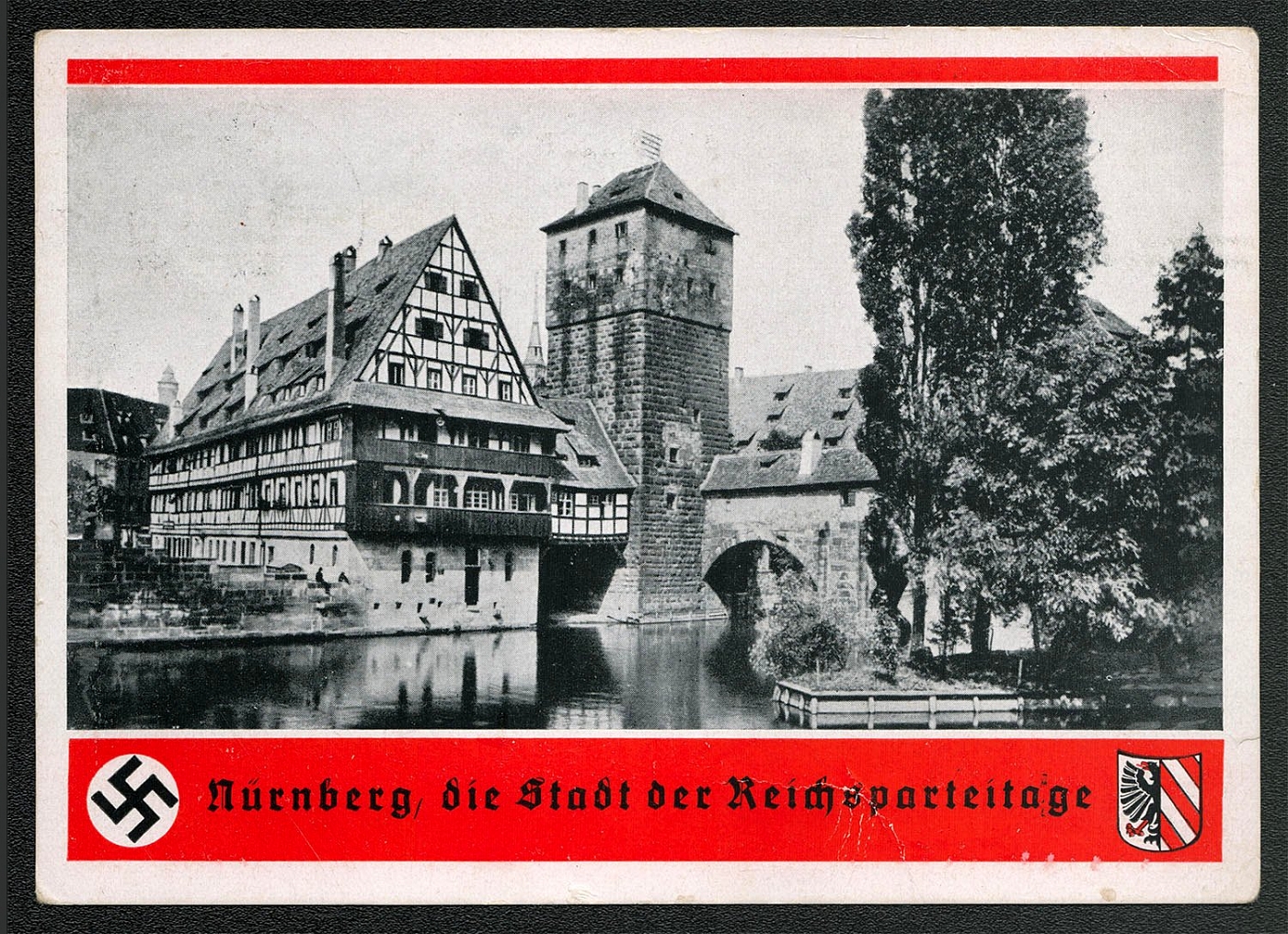
1936 Reich party rally of the NSDAP in Nuremberg, The Hangman’s Path
Mailed from Postamt Nurnberg 2 on 14 September 1936. Published by Kunstverlag Liebermann & Co., Nurnberg—W. Printed by Felix Reusche, Nurnberg-O. Nurnberg view card franked with Sc 479 with the single circle date stamp, roughly 28 mm in diameter, first used in 1936. Four varieties (“a,” “c,” “e,” and “h”) were initially installed. This “a” variety was mailed from Postamt Nurnberg 2 on 14 September 1936.
Sold for:
$30
325
$20
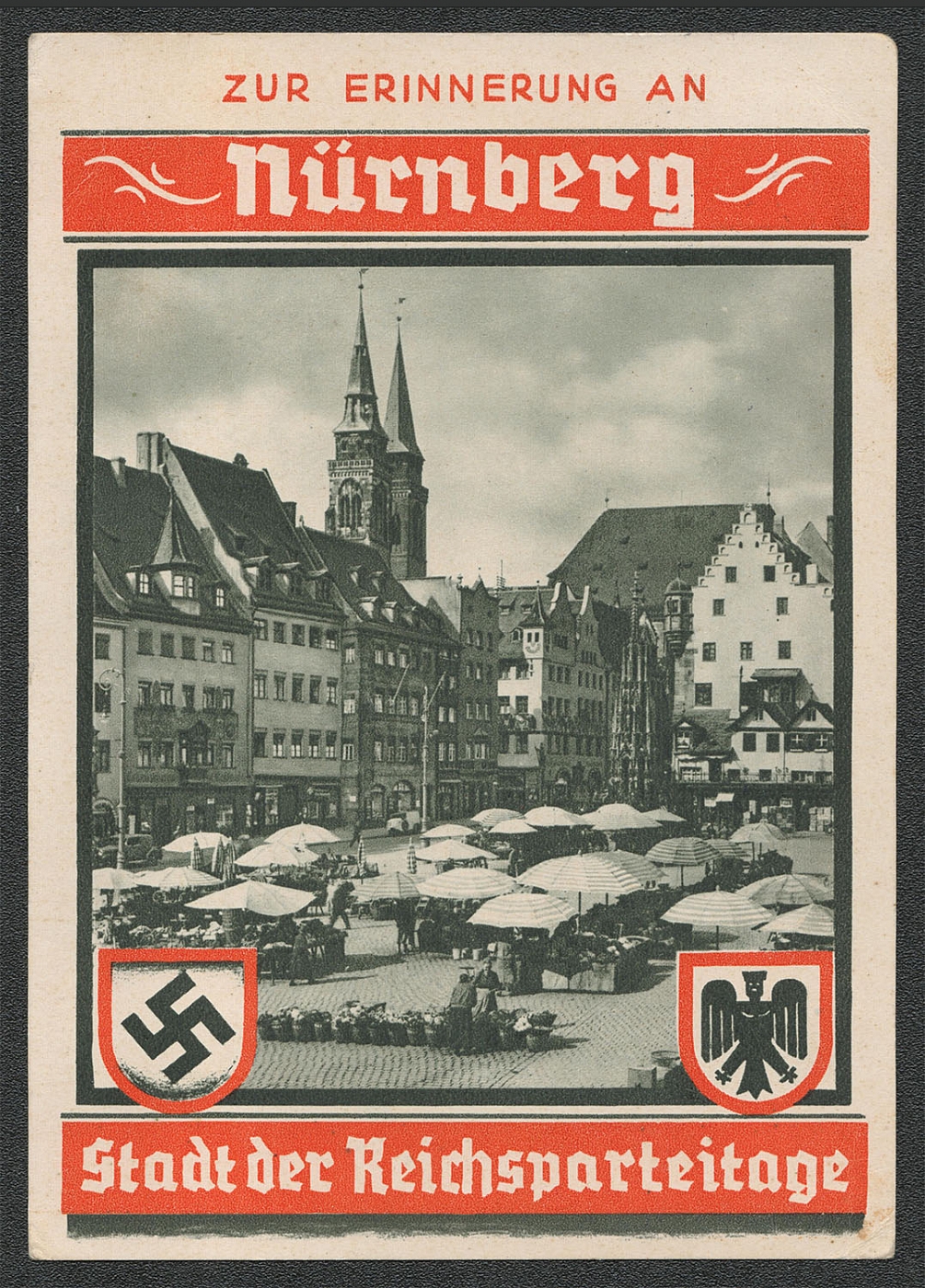
1936 Reich party rally of the NSDAP in Nuremberg, Adolf Hitler Square with the Beautiful Fountain, Handel’s Chamber and St. Sebaldus Church
View card franked with Sc 479 with the Nurnberg- die Stadt der Reichsparteitage slogan cancellation. A new single circle date stamp, roughly 28 mm in diameter, was used in 1936. Four varieties (“a,” “c,” “e,” and “h”) were initially installed. This “c” variety was mailed from Postamt Nurnberg 2 on 15 September 1936.
Sold for:
$20
326
$50
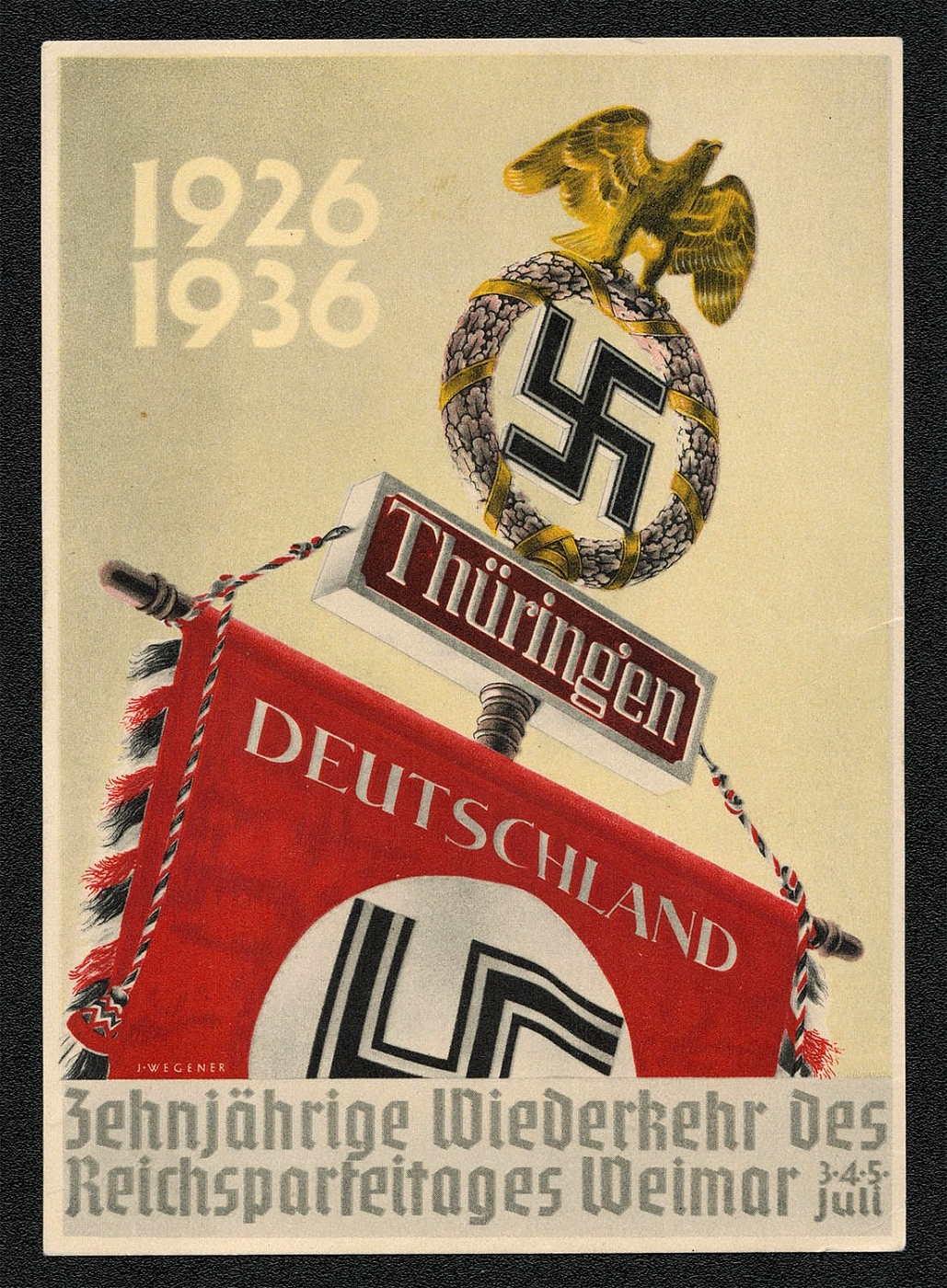
1936 Reich party rally of the NSDAP in Nuremberg, standard of the SA Gruppe (Regiment) Thuringen
"In July 1926 an early NSDAP Rally had been held in Weimar because it lay in Thuringen, one of the few German states in which Hitler was then allowed to make public speeches. This occasion was commemorated in July 1936 when the city's postal authorities decided to mark the 10""' anniversary by introducing two specially designed cancellations for use in Postamt Weimar 1. This unused commemorative postcard designed by J. Wegener was also produced. It depicts the standard of the SA Gruppe (Regiment) Thuringen, Weimar being the capital of the Gau Thuringen."
Sold for:
$50
327
$130

1936 Reich party rally of the NSDAP in Nuremberg, Hitler Youth Trumpeter, RARE card
"(Hoffmann Rally Card No. 446. Designed by Hans Friedmann.) Hoffmann Rally Card No. 446 franked with Sc 479 and postally used 13 September 1936. The card was mailed from Nurnberg Postamt 2. Four new single circle date stamps were initially produced and used, in combination with the slogan “Die Stadt der Reichsparteitage,"" automatic canceling machines at this office. Several identifying letters were used in the date stamp, the above being “c.”"
Sold for:
$130
328
$70
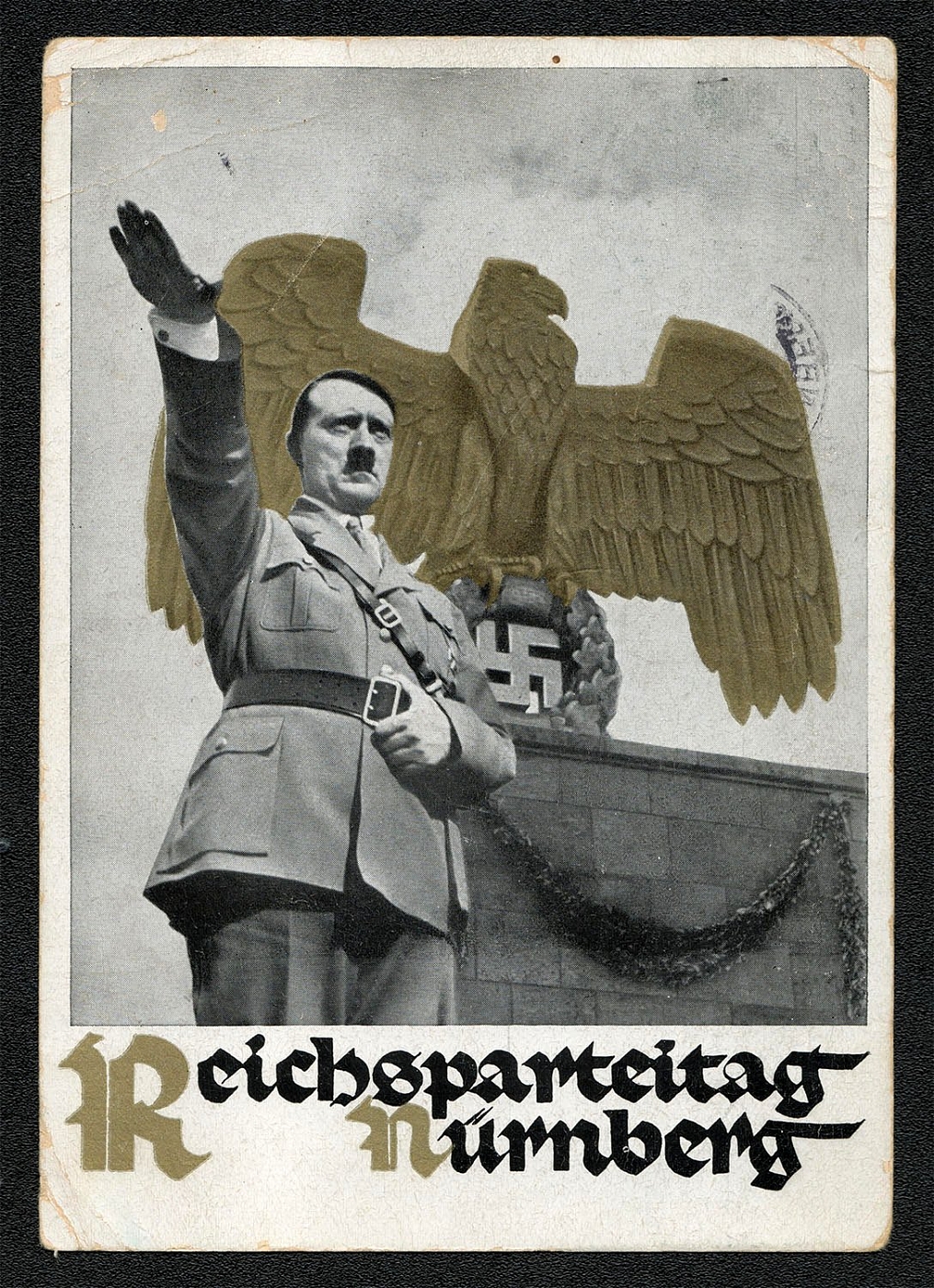
1936 Reich party rally of the NSDAP in Nuremberg, Hitler saluting
Heinrich Hoffmann Rally Card No. 50 originally published in 1935, showing Hitler saluting in front of the bronze National Socialist Eagle on the Luitpoldhain. Mailed from Postamt Nurnberg 2 on 13 September 1936. Hoffmann Rally Card No. 50 franked with Sc 442-43 and mailed from Postamt Nurnberg 2 on 13 September 1936. It is of note, however, that these 1934 issues were invalid for postal use effective 31 December 1935. Not only that, the card has been canceled twice. The double circle date stamp cancellation with the identifying letter “u” is somewhat indistinct, but it appears to be under the 12 Rpf value. In this variety, the divided shield has three shaded bars. The second cancellation, a strong 28-mm single circle date stamp with the identifying letter “b” is the variety with the divided shield (with two complete shaded bars) on the right.
Sold for:
$70
329
-
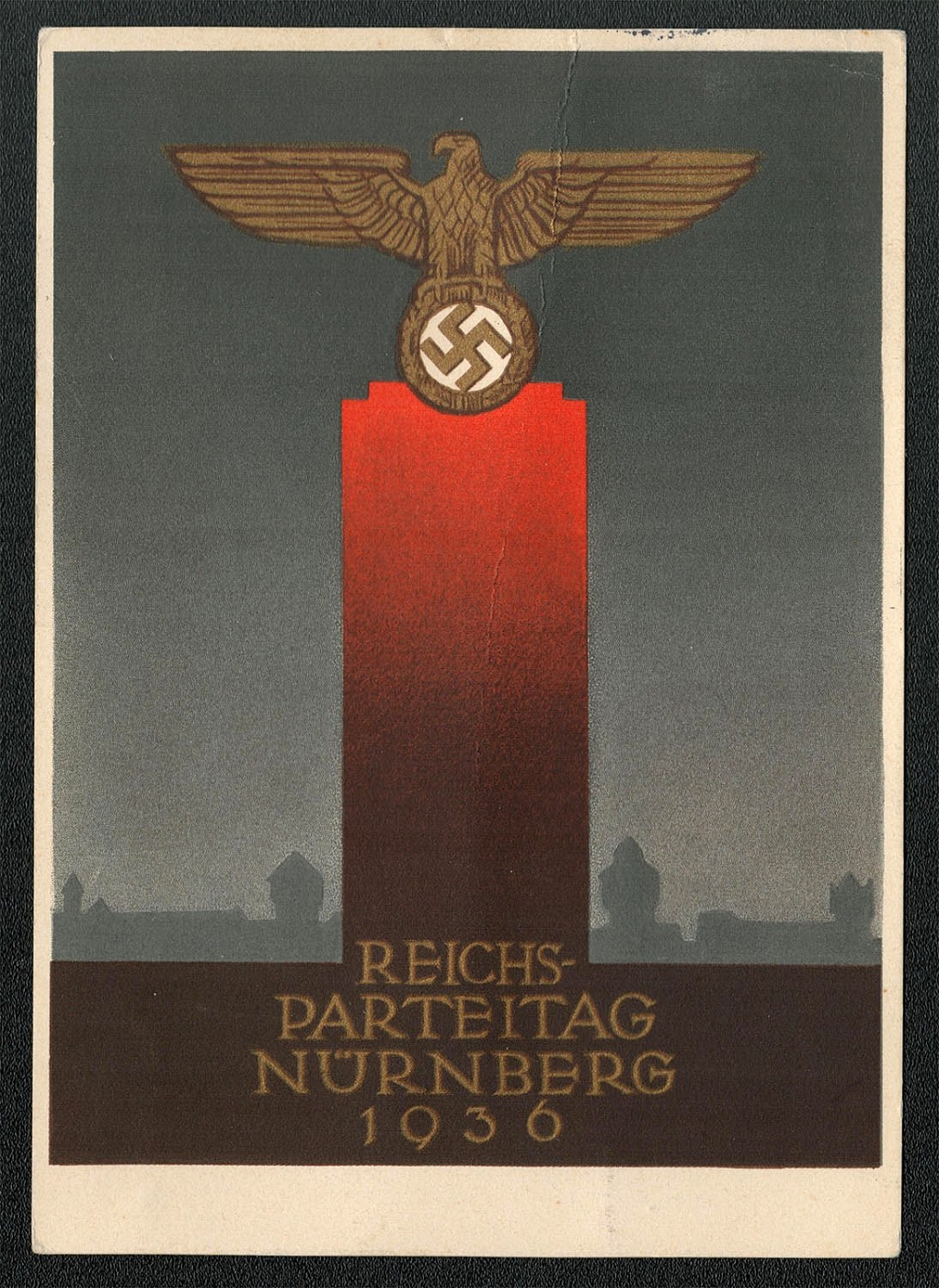
1936 Reich party rally of the NSDAP in Nuremberg, The eagle and swastika on a pedestal
A semiofficial NSDAP post card for the 1936 Nurnberg Rally. Depicted is the eagle and swastika on a pedestal, the trophy-like symbol of the Party. The card was designed by Professor Richard Klein of Munchen and published by Zentralverlag der NSDAP, successor to Franz Eher, Munchen. Rally post card franked with Scott 479 mailed 13 September 1936 at Postamt Nurnberg 2. German longhand script known as Sutterlin, and translates to “The City of the Reichs Party Rallies.”
Unsold
330
$110

1936 Reich party rally of the NSDAP in Nuremberg, SA Standard Bearer, RARE card
Hoffmann Rally Card No. 36/9 franked with Sc 479. Mailed from Postamt Nurnberg 2, 14 September 1936. This 1936 slogan cancellation is the same as the 1935 design, a double circle date stamp with the identifying letter “u.” As in the earlier design, the divided shield with three complete shaded bars is on the left. It was used throughout 1936 in Postamtern 1, 2 and 5.
Sold for:
$110
331
$75
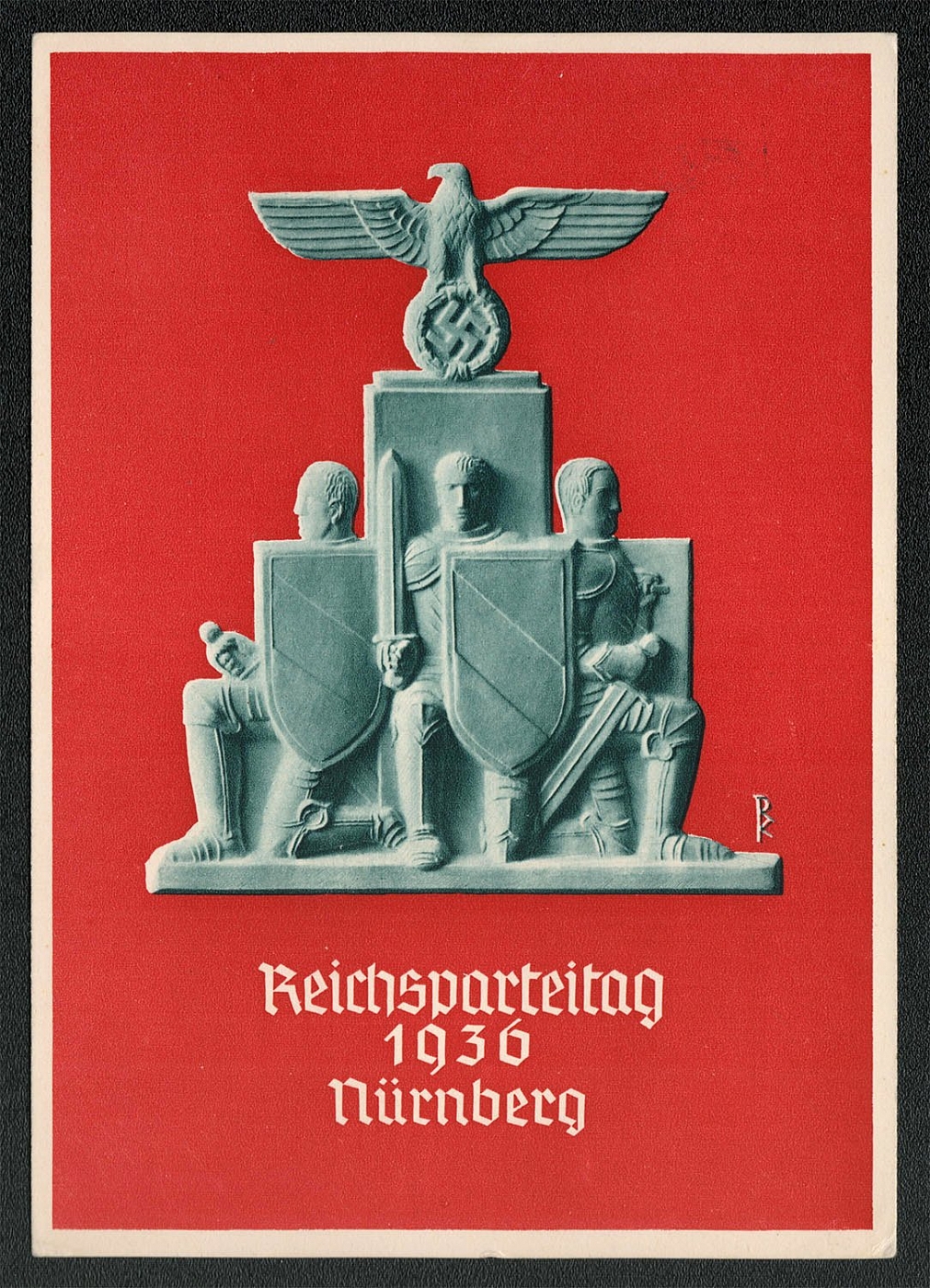
1936 Reich party rally of the NSDAP in Nuremberg, Knights
This semi-official post card depicts the plaque designed by Professor Richard Klein, and was issued by the NSDAP Central Office in Munchen. Held in an Olympic year, the Party Rally of Honor was on a vast scale never before equaled. In his main speech, Hitler announced his first Four Year Plan, which summarized economic preparations for war. This Reichsparteitag post card was mailed from Nurnberg on 16 September 1936 to Parteigenossen Lagarie in Diisseldorf by a number of his friends who attended the Party Congress. Note the multiple signatures and “Heil Hitlers.” Parteigenosse refers to a fellow member of a political party. The term is now irredeemably associated with the NSDAP.
Sold for:
$75
332
-
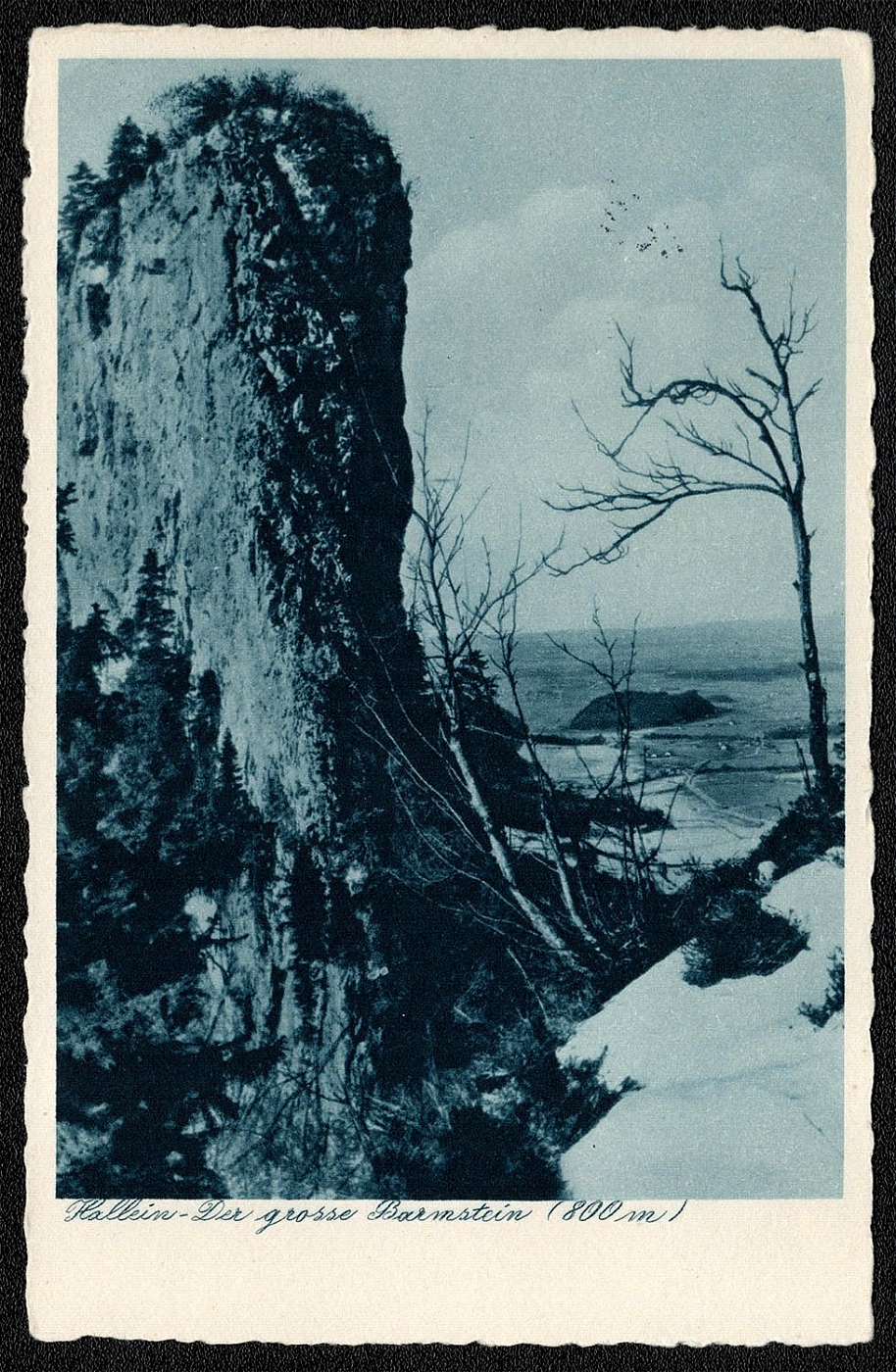
1937 Reich party rally of the NSDAP in Nuremberg, Hallein-The great Barmstein
1937 Reich party rally of the NSDAP in Nuremberg, Hallein-The great Barmstein
Unsold
333
-
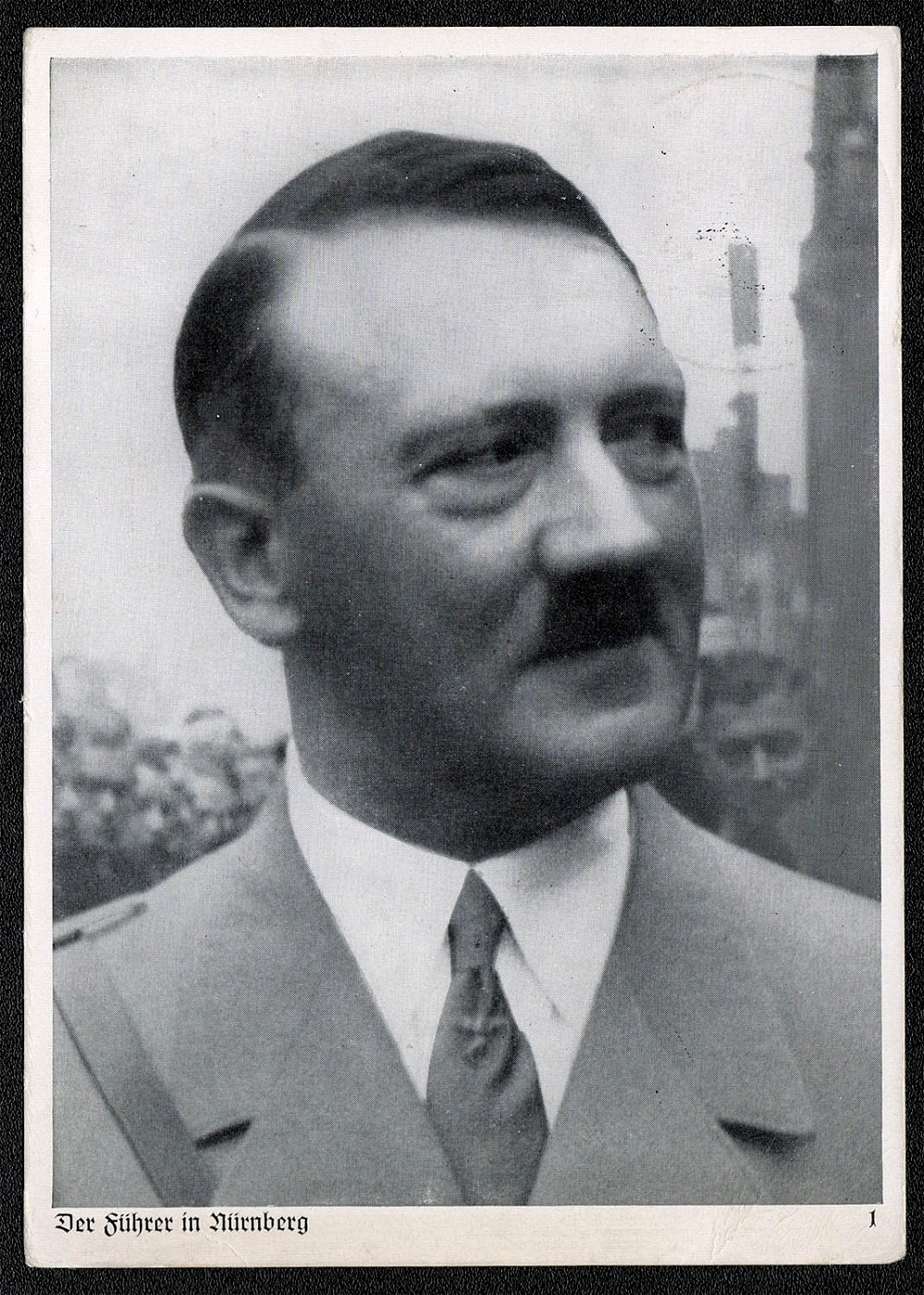
1937 Reich party rally of the NSDAP in Nuremberg, Hitler in Nuremberg
Zerreiss black and white photo card franked with Sc B106a and a favor cancellation (Gefalligkeitsstempelungen) dated 6 September 1937. The “d” in the postmark indicates it was applied at Postamt Furth 2.
Unsold
334
$55
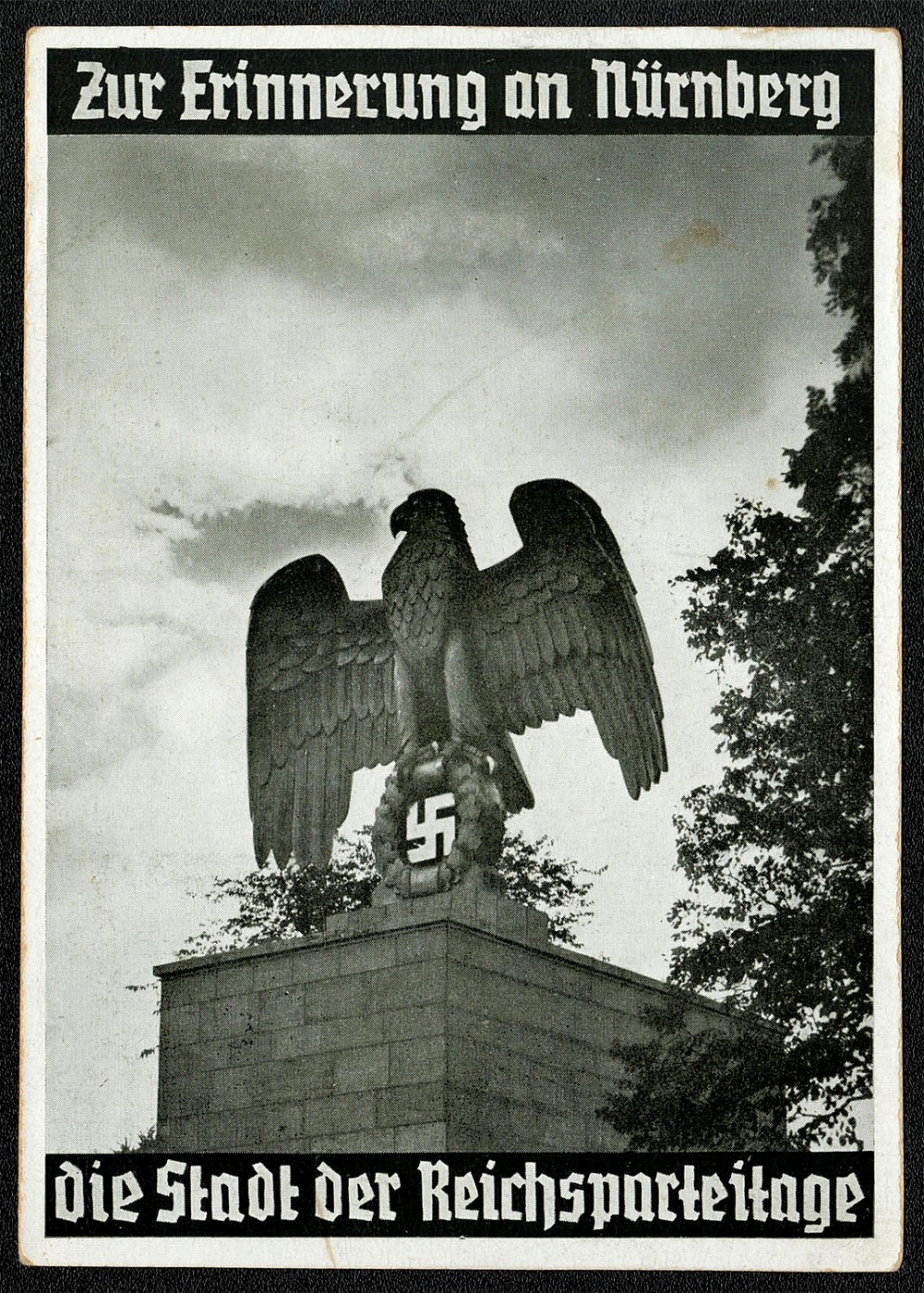
1937 Reich party rally of the NSDAP in Nuremberg, The monumental Reichsadler in the Luitpold Arena
View card 53 published by Kunstverlag George Michel, Nurnberg-S. The gefdlligkeitsstempel (favor cancellation) was applied on 7 September 1937. The card is franked with a tab single of Scott 106a, The letter “c” inserted below the date bridge in sonderhandstempel (commemorative hand stamp) indicates the card was cancelled in Postamt Nurnberg 2. View card published by Kunstverlag George Michel presenting a view of the monumental Reichsadler in the Luitpold Arena on a cloudy day.
Sold for:
$55
335
-
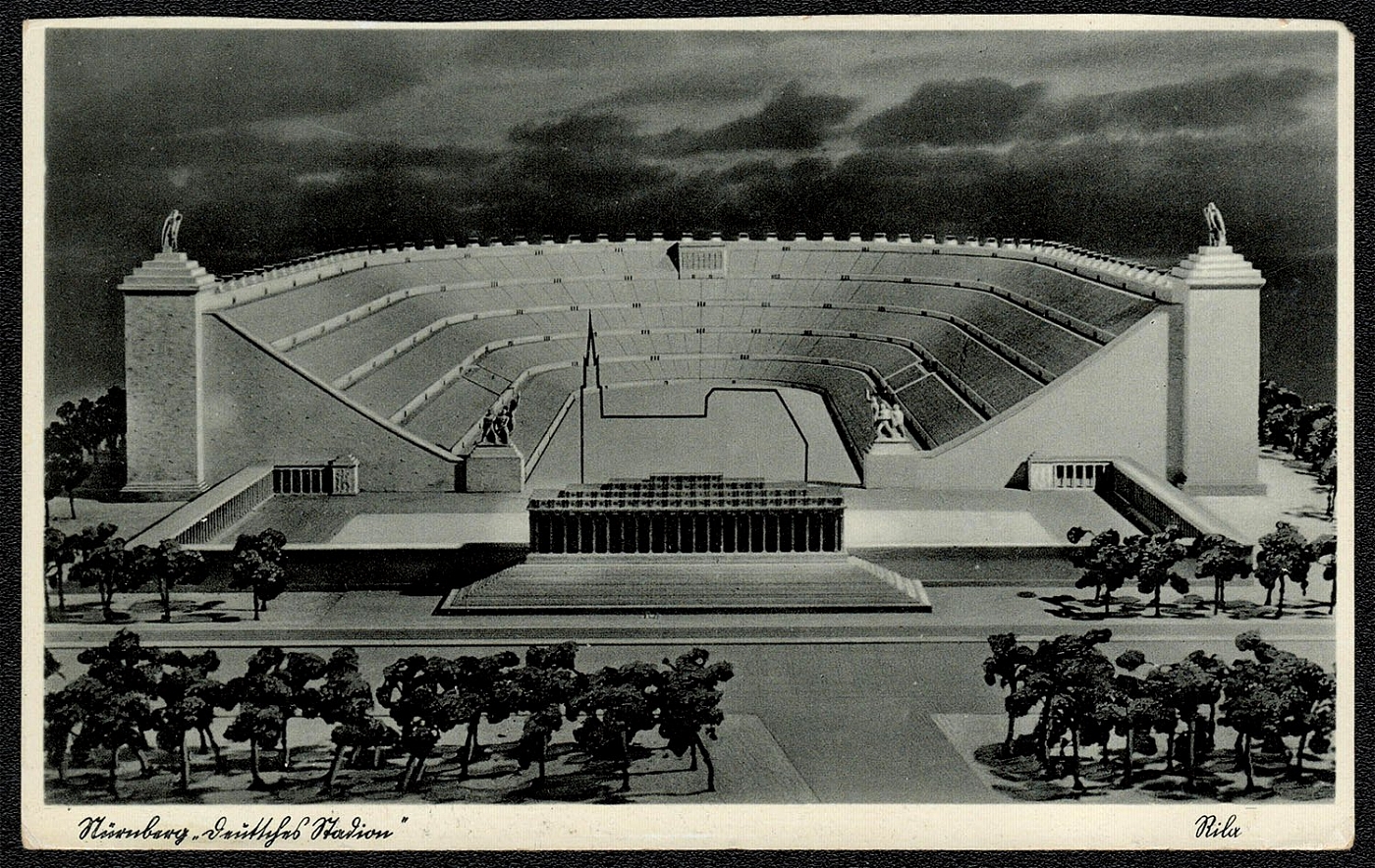
1937 Reich party rally of the NSDAP in Nuremberg, Model of the “German Stadium
Unmailed post card crudely cut from an “accordion” booklet published by Verlag Ludwig Riffelmacher, Furth i. Bayern, Wurzburger Strasse 201. “Rila” is believed to be a company trademark. The truncated caption on the reverse of the card reads: Stadt der Reichsparteitage Nurnberg. Modell des „Deutschen Stadion“. Architekt: Generalbauinspektor Prof. Albert Speer. Blick uber die Standartenhalle in die Kainpfbahn. Stadion: Lange 560 m, Breite 450 m, Hohe 83 m. Ecktiinne: 100 m. Pliitze fur 405,000 Zuschauer. Spielfeld 150 x 400 m. Die schwarze Linie zeigt zum Vergleich die Grosse der . . . Niirnberg, City of the Party Rally. Model of the “German Stadium. ” Architect: General Building Inspector Prof. Albert Speer. Overview of the Standartenhalle in the Battle Path. Stadium: 560 meters long, 450 meters wide, 83 meters high, Corner towers. 100 meters. Seating for 405,000 spectators. Sports Field 150 x 400 meters. The black line shows a comparison to the Greater . . .
Unsold
336
$20
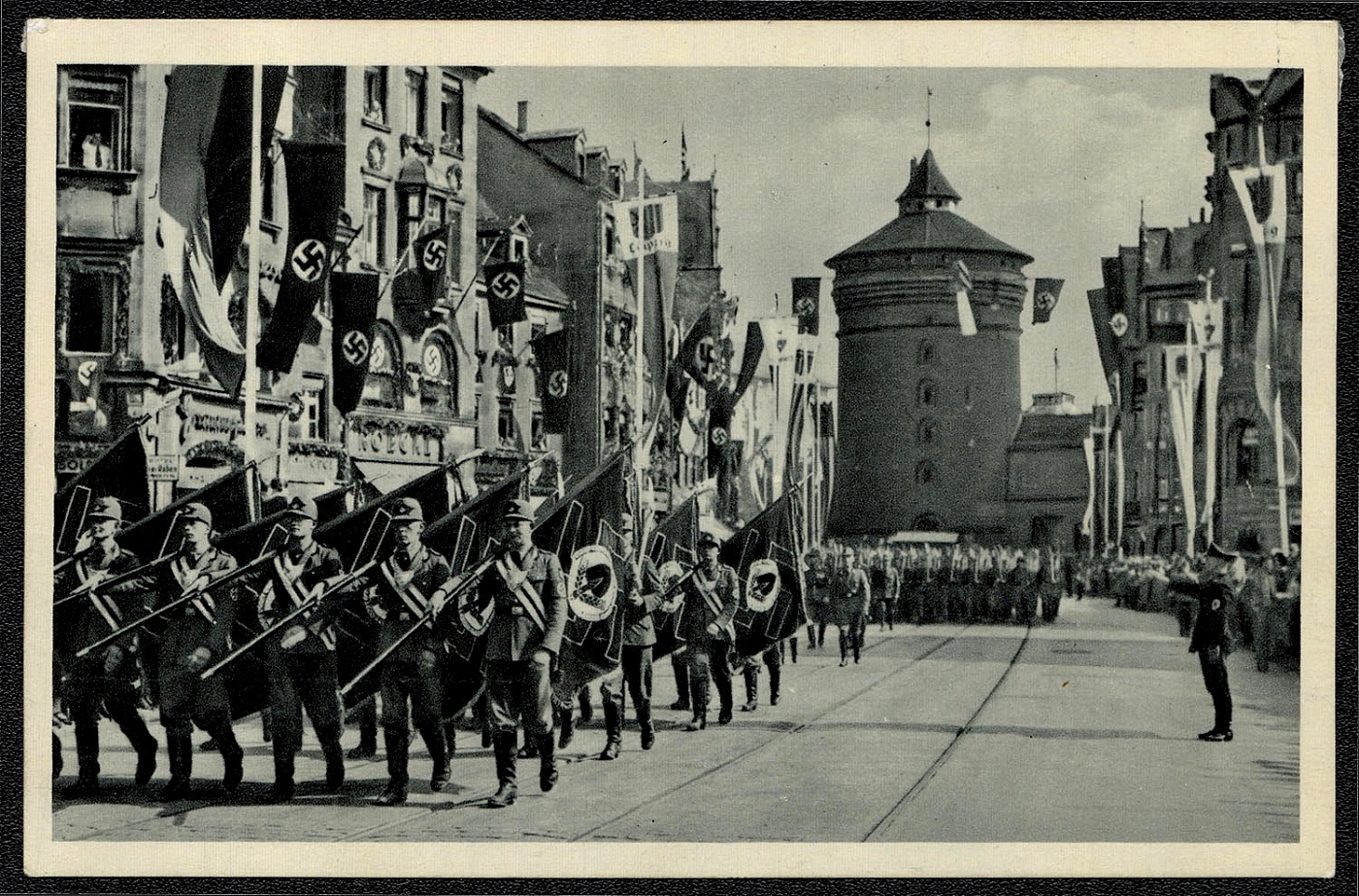
1937 Reich party rally of the NSDAP in Nuremberg, Procession of Workers
Postally used photo card published by Verlag Alfred Oeinler, Berlin C 25. Franked with a single from the Sc В106 souvenir sheet and cancelled with the new 1937 Bossek-designed Parteitagshandstempel of which there are two varieties. It was mailed in Nurnberg on 7 September 1937. The card above exhibits the typical identifying letter in the lower left quadrant of the cancel, in this case an “h”. It is unknown which particular post office used an “h”.
Sold for:
$20
337
$50
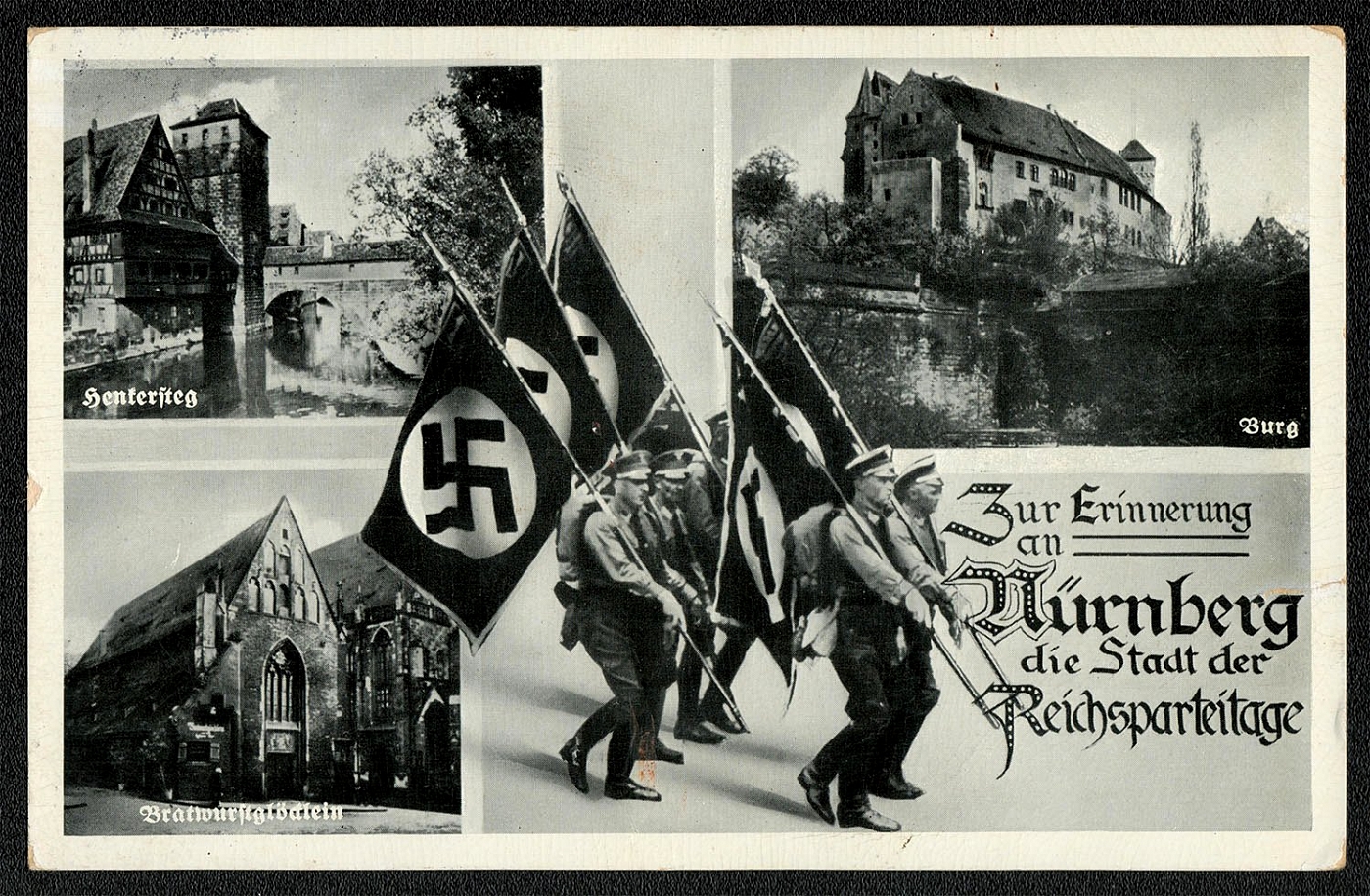
1937 Reich party rally of the NSDAP in Nuremberg, City views
Otto Hoppe Verlag View card No. 124 Postally used with commemorative handstamp dated 7 September 1937. The letter “g” in the cancel designates one of the temporary post offices on the Rally grounds, but the specific Nurnberg Postamt that forwarded the card is not known.
Sold for:
$50
338
-
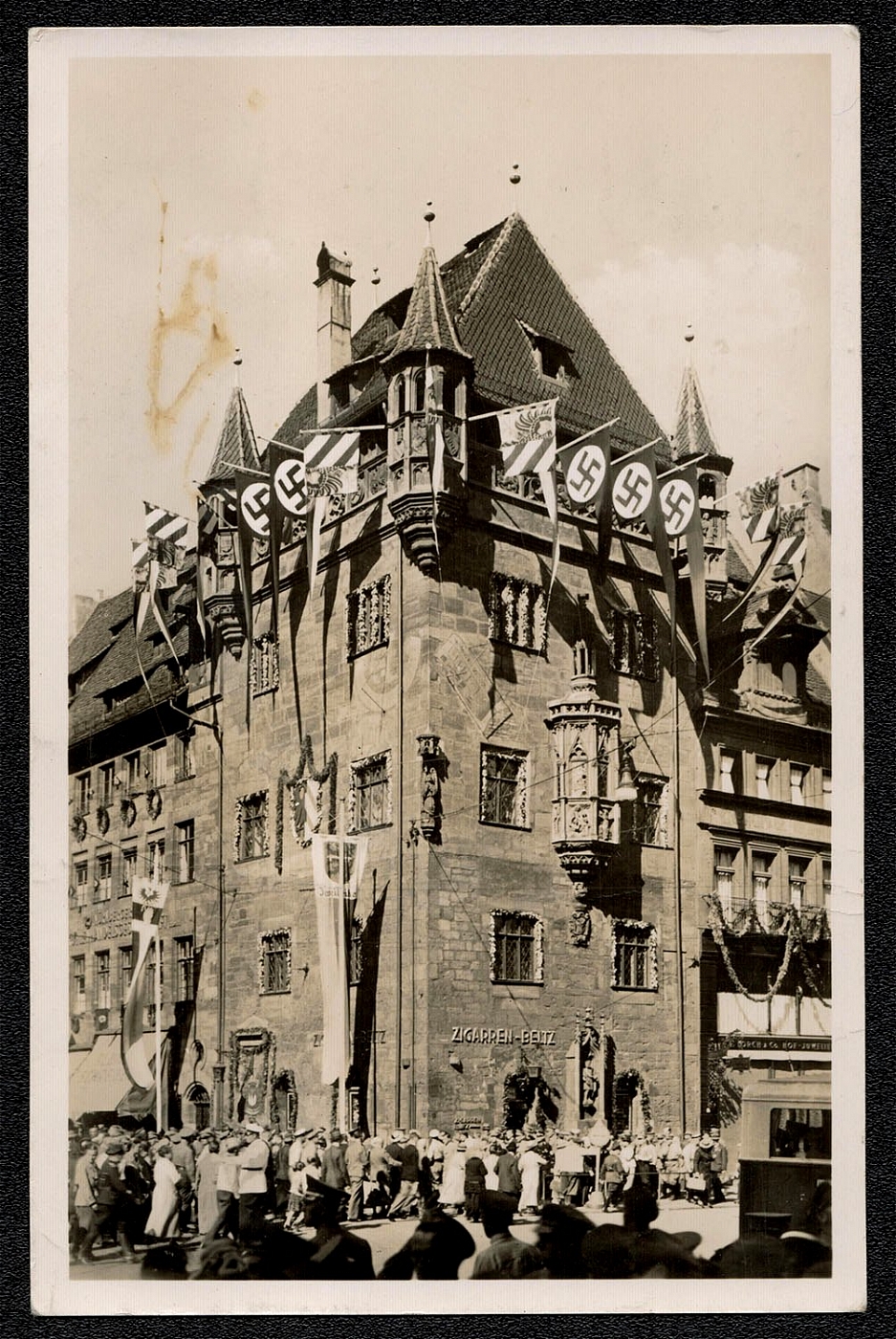
1937 Reich party rally of the NSDAP in Nuremberg, Decorations on Nuremberg’s Nassauer Haus
(The Reichsparteitag decorations on Nurnberg’s Nassauerhaus.) Reproduction of the photo side of the Reichsparteitag card (right) published by Kunstverlag Georg Michel of Nurnberg. Depicted is the Nassauerhaus with its oriel (the projecting bay window) and corner turrets. The lower part was erected in the 13'h century, the Gothic upper in 1422-31. Kunstverlag Georg Michel black and white photo card franked with Sc 419 dated 9 September 1937. The Type I Werbestempein fiir die Parteitage (Rally publicity cancel) depicts one of the bronze eagles at Luitpoldhain and a stylized view of the city rooftops. The new design was used only Postamt 2 Nurnberg and is of the variety in which the “U” in NURNBERG is relatively narrow. Each separate die was distinguished by one of six small identifying letters, the above being “e.” The Eagle in the Type I roller cancellation die is complete and the printing is very clear and distinct although the above example is lightly inked.
Unsold
339
-
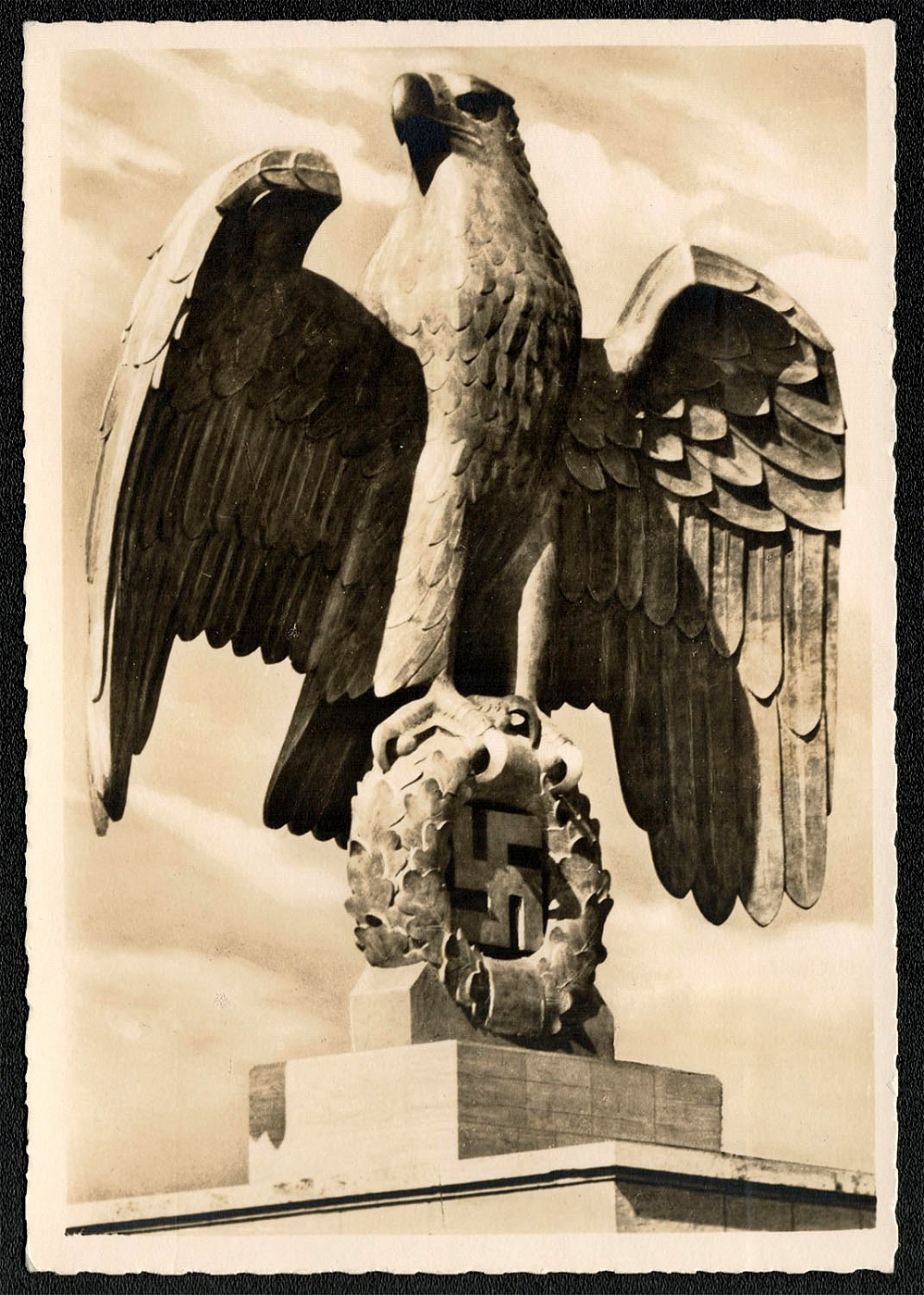
1937 Reich party rally of the NSDAP in Nuremberg, The monumental National Emblem on the Platform of Honor
(The monumental National Emblem on the Platform of Honor in the Luitpold Arena.) Published by Stoja-Verlag Janke & Dr. Maiwald, Nurnberg-A (Nr. 7031). (Photograph) taken with a Meyer-Optik (camera).
Unsold
340
$16
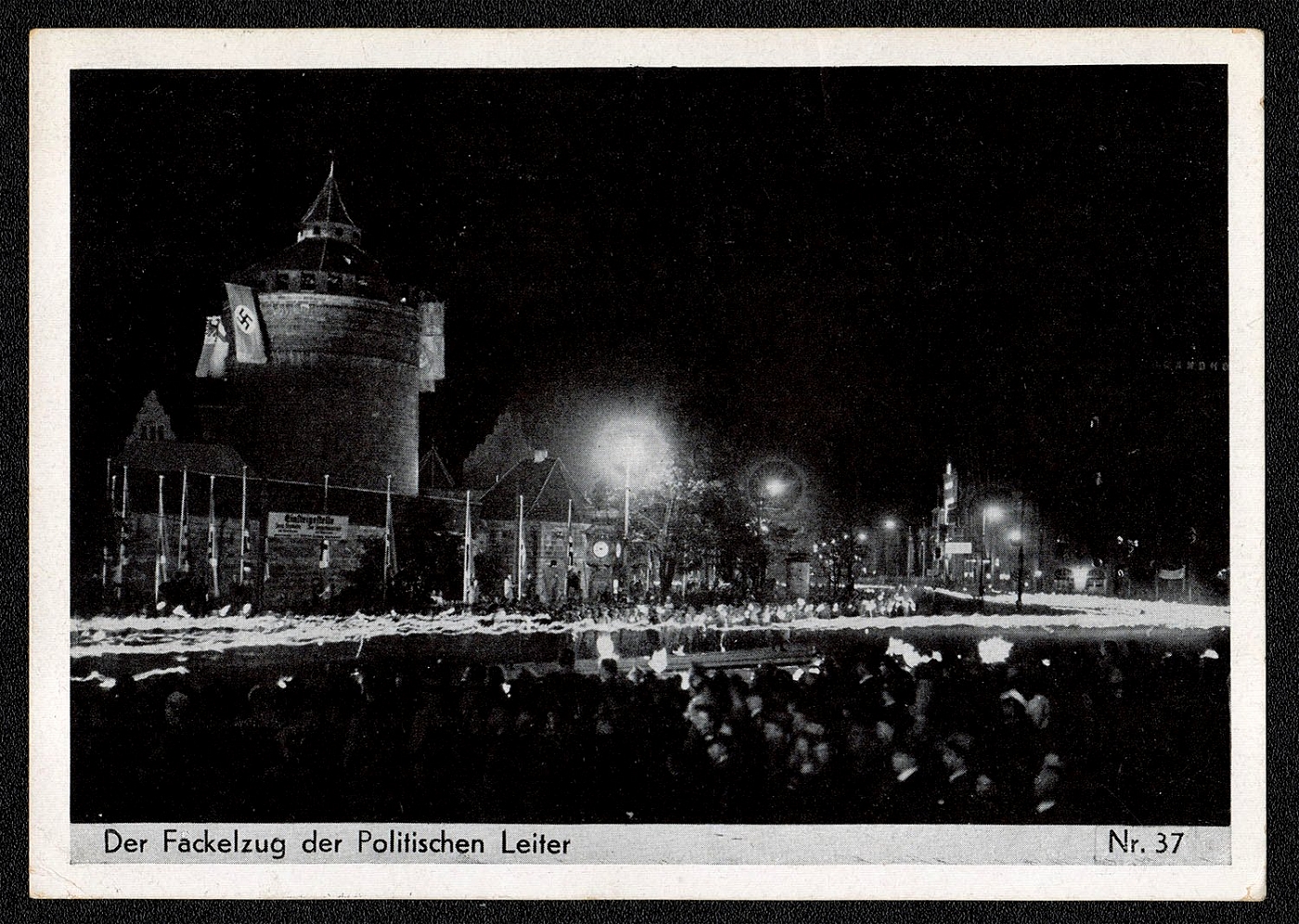
1937 Reich party rally of the NSDAP in Nuremberg, The Torchlight Parade of the Political Leaders
Reichsparteitag Postkarte postally used 13 September 1937. Franked with Sc 106a. The routing designated by the identifying letters “a m” in the sonderhandstempel (commemorative handstamp) was through Postamt Nurnberg 2.
Sold for:
$16
341
$25
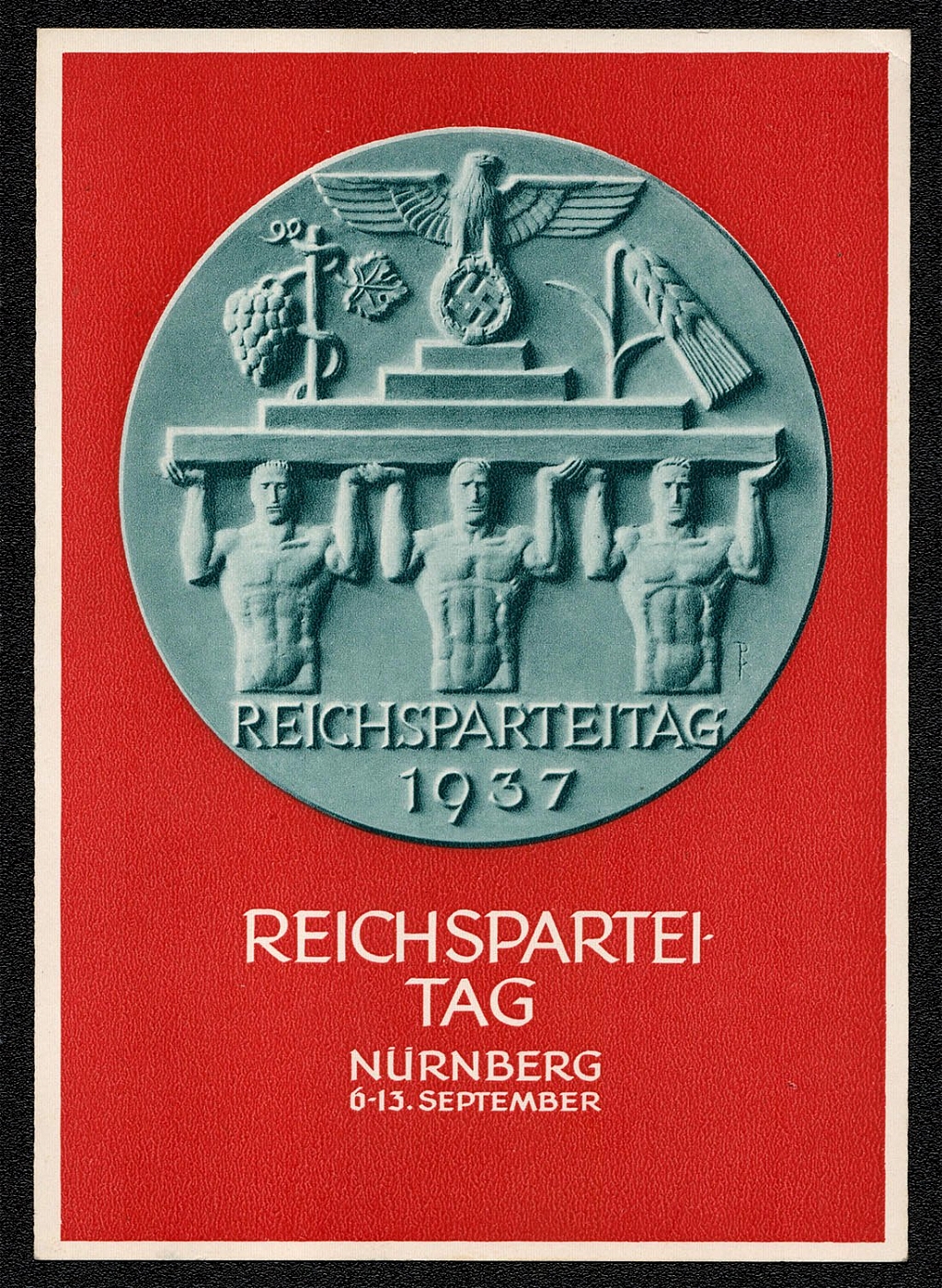
1937 Reich party rally of the NSDAP in Nuremberg, The Party Days Badge
The Party Days Badge The Party Day Plaque for 1937. designed by Prof. Richard Klein.
Sold for:
$25
342
-
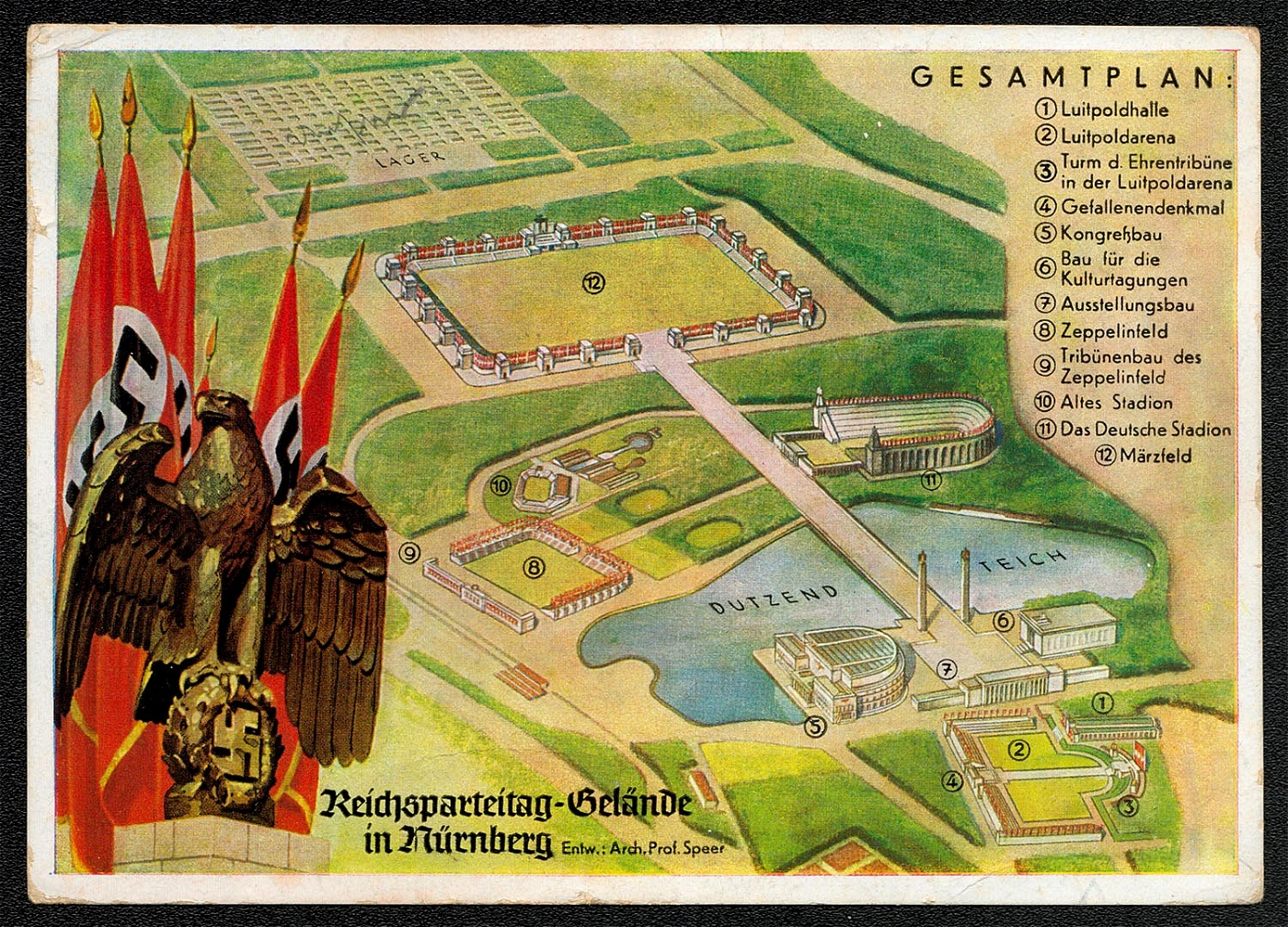
1937 Reich party rally of the NSDAP in Nuremberg, Overall plan of the Camp
Hoffmann full color artist’s card (No. 37/1) franked with Scott 403 posted in Nurnberg on 5 September 1937. Artist unknown. It is not known in which temporary Postamt the “Eagle” slogan cancellation with the “h” date stamp was used. A translation of the Gesamtplan (overall plan) is as follows: Lager (Camp) (1) Luitpoldhalle (Luitpold Hall) 2) Luitpoldarena (Luitpold Arena) (3) Turn d. Ehrentribiine in der Luitpoldarena (Platform of Honor Tower) (4) Gefallendenkmal (Memorial to the Fallen) (5) Kongressbau (Congress Building) (6) Bau fur die Kulturtagungen (Building for Cultural Conferences) (7) Ausstellungsbau (Exhibition Building) (8) Zeppelinfeld (Zeppelin Field) (9) Tribiinenbau des Zeppelinfeld (Zeppelin Field Speaker’s Platform) (10 ) Aites Stadion (Old Stadium) (11) Das Deutsche Stadion (German Stadium) (12) Martfeld (March Field) Dutzend Teich (Dutzend Lake)
Unsold
343
-
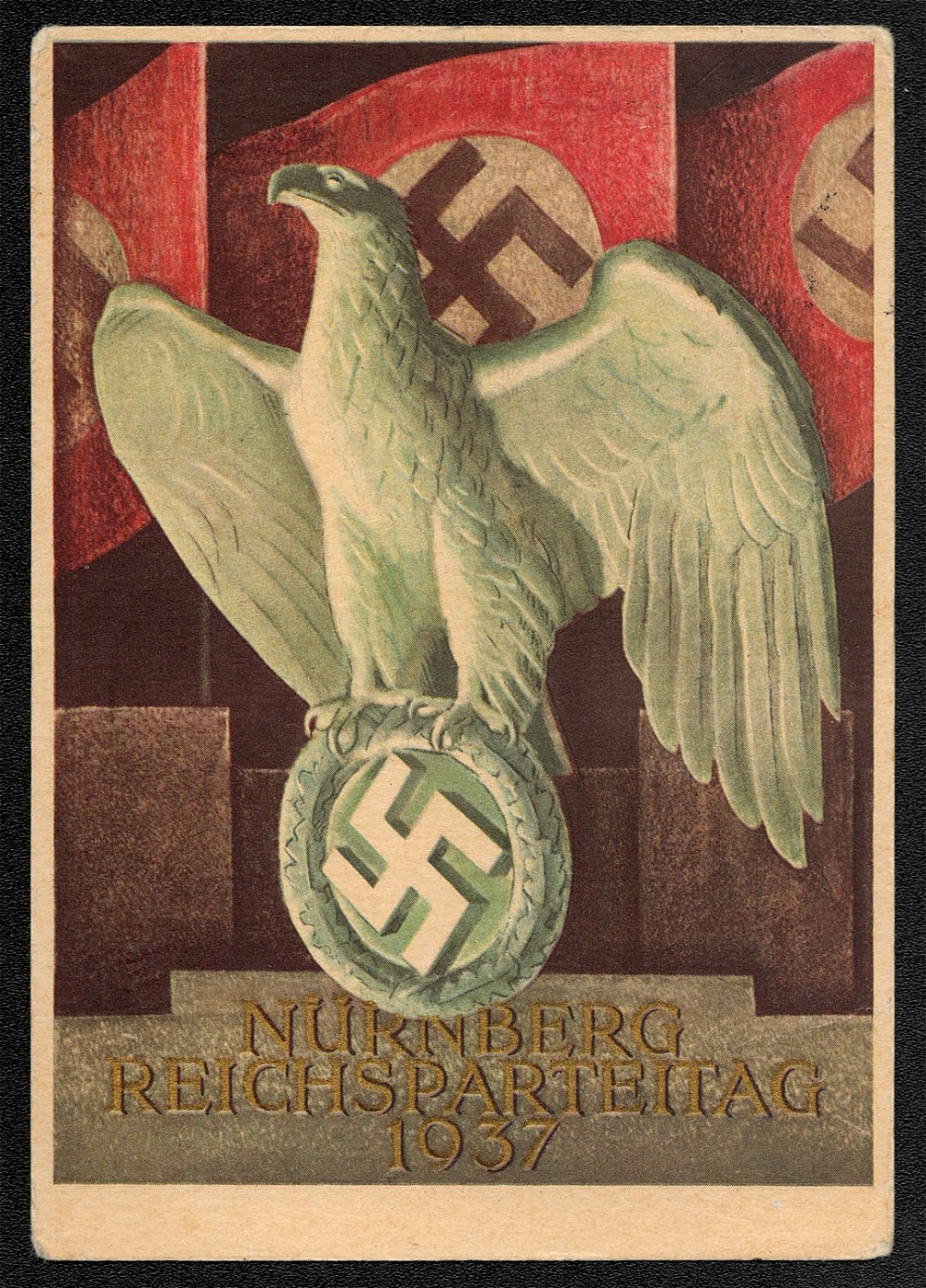
1937 Reich party rally of the NSDAP in Nuremberg, The National Emblem on the Platform of Honor
This official NSDAP. Rally card was postally used 6 September 1937 and received a Parteitaghandstempel cancellation on the franking (Scott 106a) at a temporary Nurnberg Postamt on the Rally grounds. Unfortunately, the one using the identifying letters “a /” has yet to be identified.
Unsold
344
$60
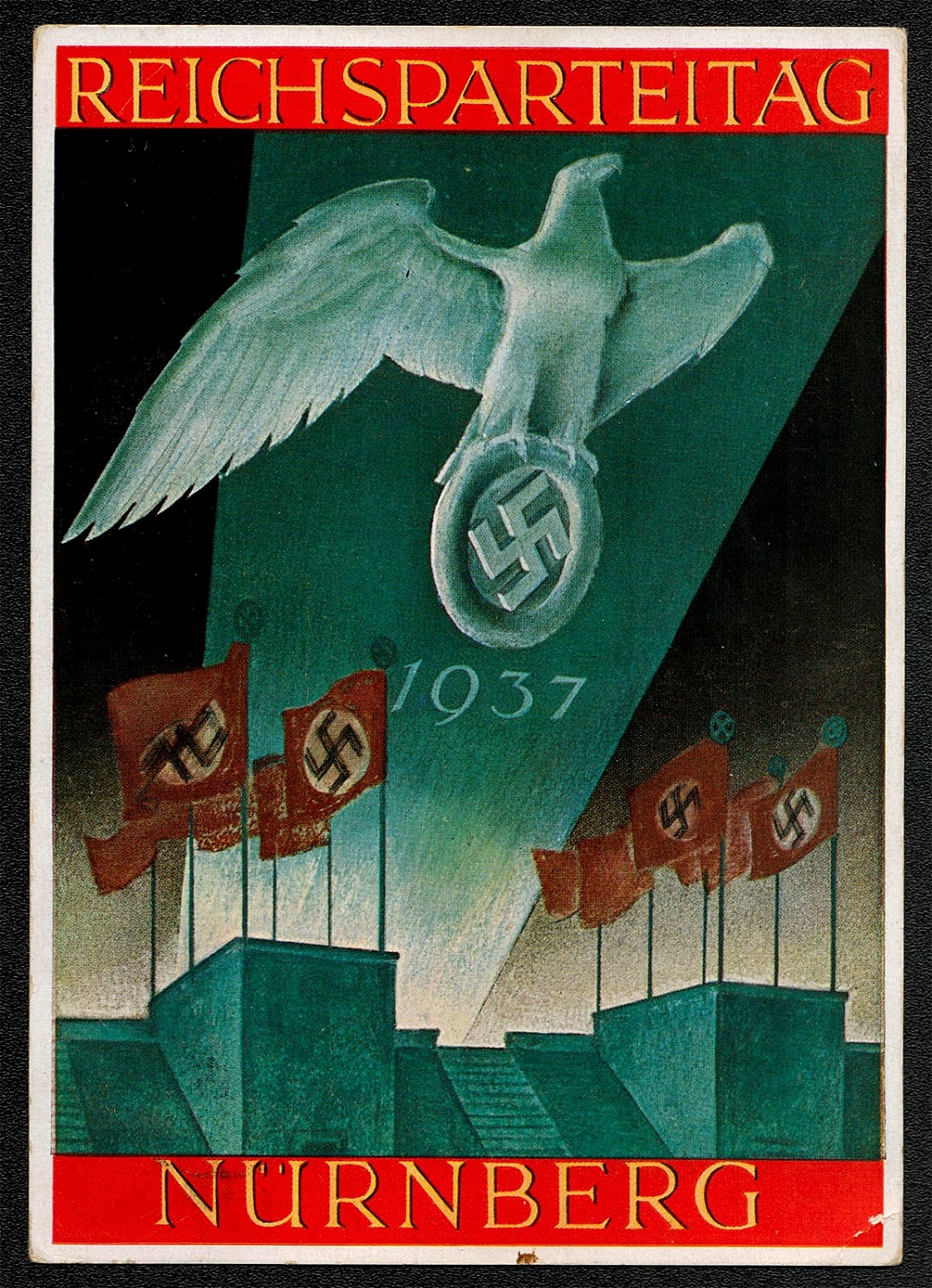
1937 Reich party rally of the NSDAP in Nuremberg, Eagle Soaring in Searchlight Beam
Hoffmann Rally Card No. 37/14 franked with Sc 419 and postally used 7 September 1937. The Werbestempeln fur die Parteitage (Rally publicity cancel) depicts one of the bronze eagles at Luitpoldhain and a stylized view of the city rooftops. The new design was used only Postamt 2 Nurnberg and is of the type in which the “U” in NURNBERG is wide. Each separate die was distinguished by one of six small identifying letters, the above being “z. ”
Sold for:
$60
345
$18
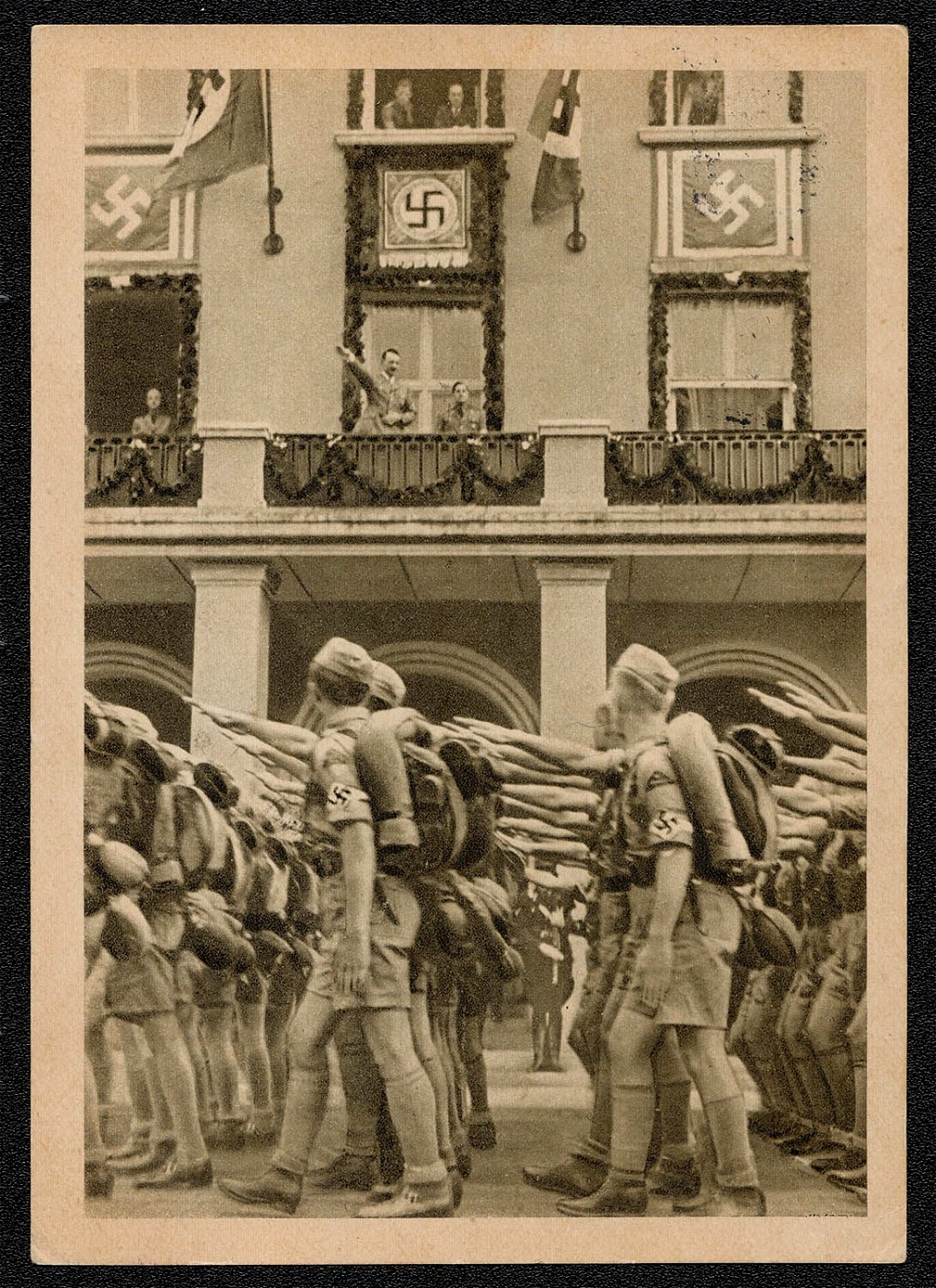
1937 Reich party rally of the NSDAP in Nuremberg, Adolf Hitler
Reichsjugendfiibrung (Reich Youth Leadership) photo card published by Walter Kersten, Halle (Saale). Franked with Sc 419 and posted at Postamt 2 on the Rally Grounds 8 September 1937. The Reichsjugendfiibrung was established in 1931 under Baklur von Schirach (left of Hitler in photo). In 1940 all NSDAP youth groups were incorporated into the Hitler Jugend.
Sold for:
$18
346
$120

1937 Reich party rally of the NSDAP in Nuremberg, Eagle and BdM Girl with Bouquet, RARE card
Rally card (37/8) published by Hoffman in 1937. Designed by Richard Borrmeister. Postally used 8 September 1937.
Sold for:
$120
347
-
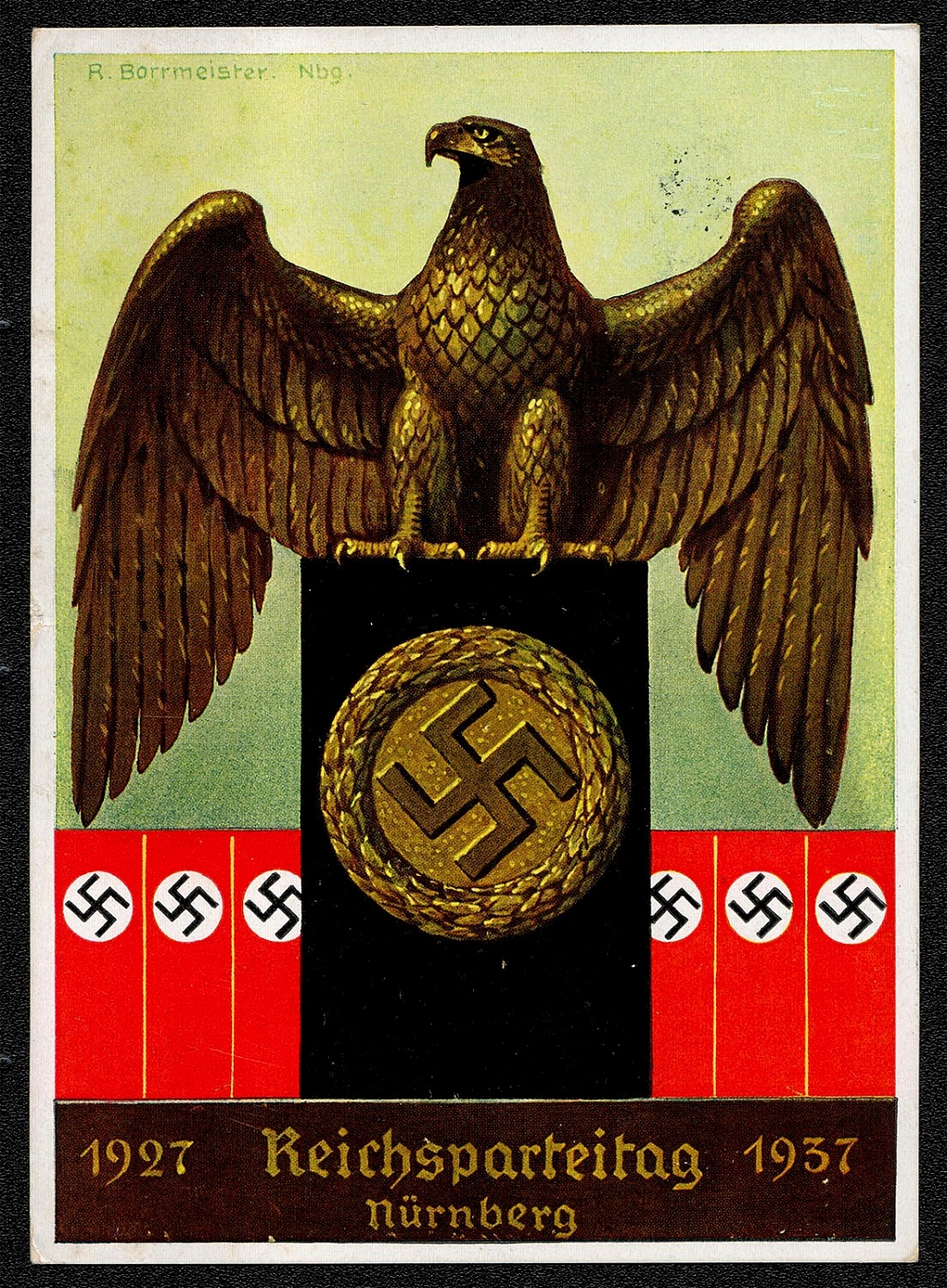
1937 Reich party rally of the NSDAP in Nuremberg, Eagle, RARE card
Reichsparteitag Rally Card, Series 37/3, published by Heinrich Hoffmann, Munchen. Designed by Richard Borrineister. The card commemorates the Tenth Anniversary of the 1927 Rally that was given the name “Tag der Erwachenden, ” The Day of Awakening.” It was the first rally of any significance held in Nurnberg. The card is franked with a tab single of the 1937 Reichsparteitag commemorative (Sc B106a). It was posted Saturday, the ll,h of September 1937, and received the “d” variety of the commemorative cancellation designed by Bossek.
Unsold
348
$60
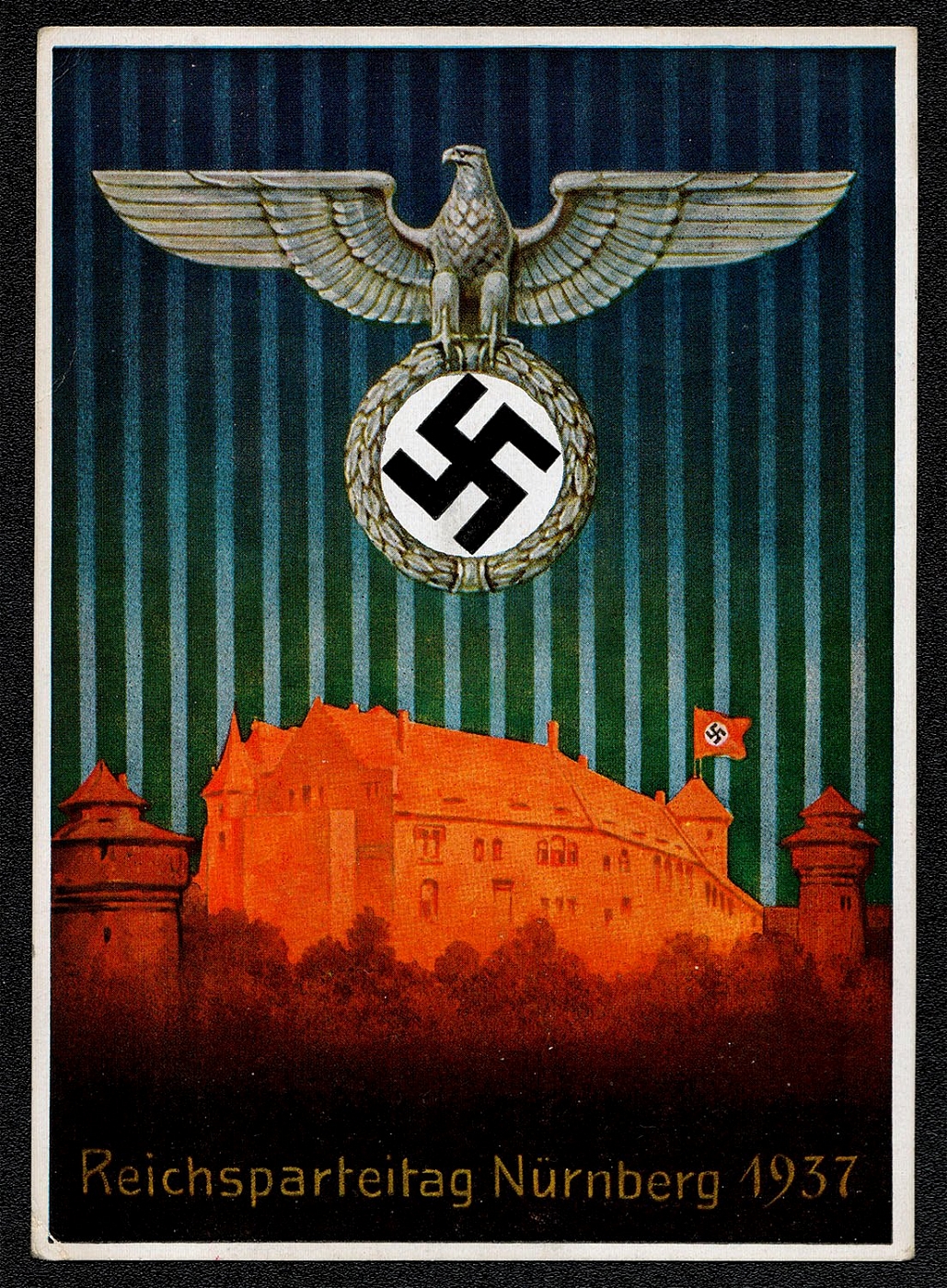
1937 Reich party rally of the NSDAP in Nuremberg, Castle with Eagle and Search Lights
Heinrich Hoffmann Parteitagspostkarte No. 37/2. (Artist and printer unknown.) Franked with Sc 419, postally used 12 September 1937. The routing designated by the identifying letter “o” in the sonderhandstempel (commemorative handstamp) is unknown.
Sold for:
$60
349
$25
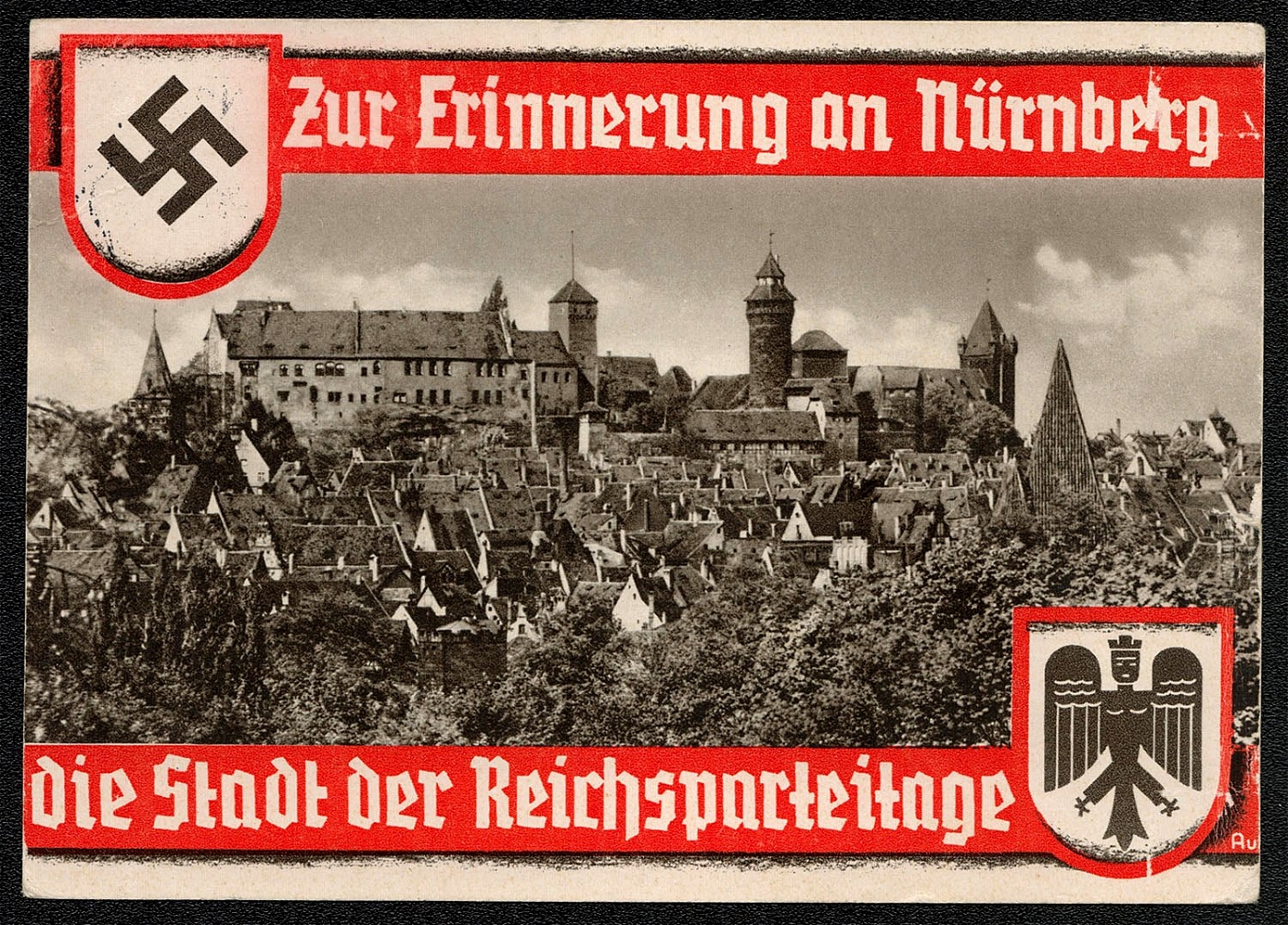
1937 Reich party rally of the NSDAP in Nuremberg, Fantastic view from Hallertor towards the town
franked with Scott В 102a and posted in Niirnberg 14 September 1937. The “Adler” slogan cancellation with the “e” date stamp used in Postamt Nurnberg 2 is the variety with the narrow “U” in “NURNBERG”.
Sold for:
$25
350
-
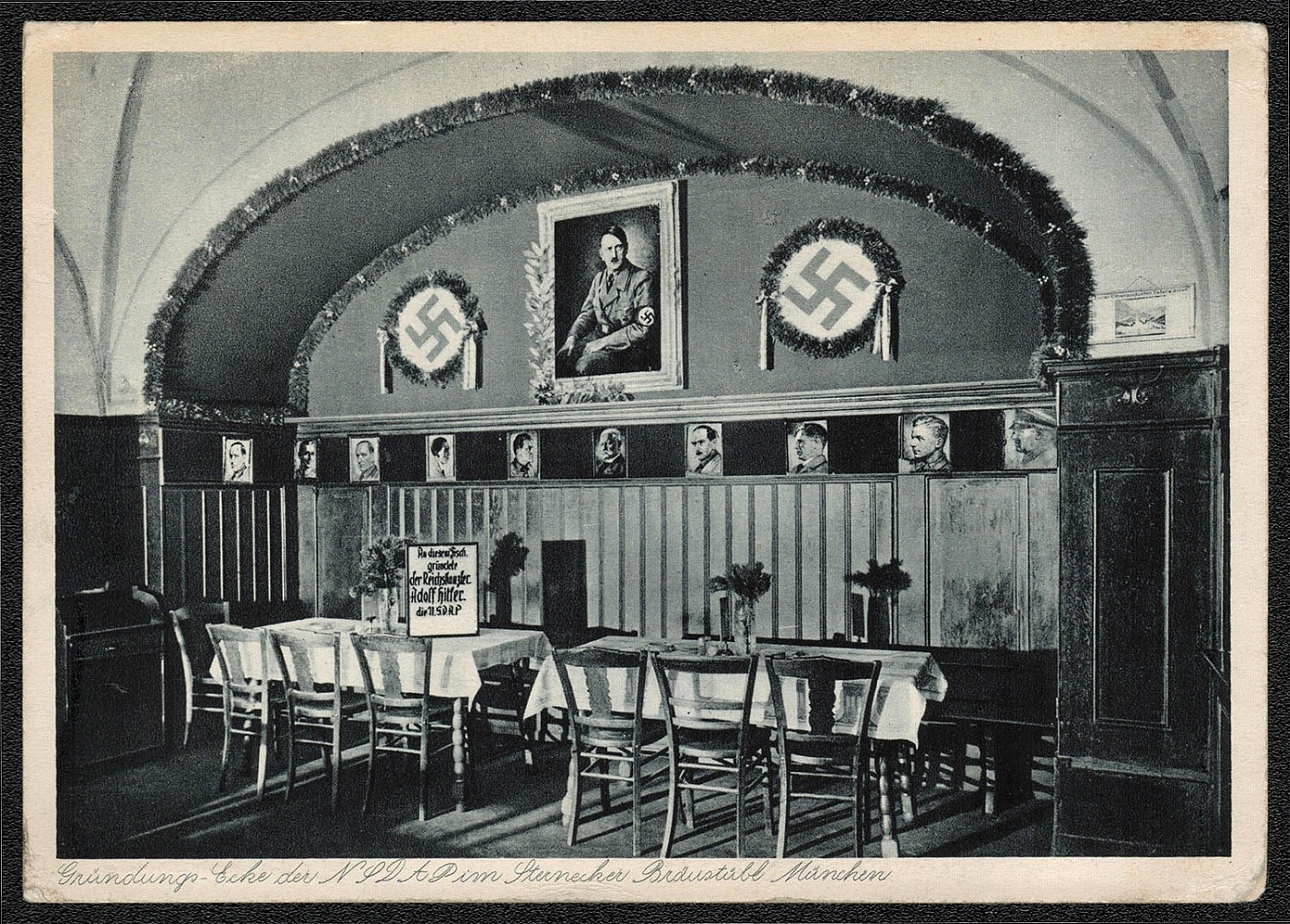
1938 Reich party rally of the NSDAP in Nuremberg, Foundation-corner of the NSDAP in Sternecker-Braustiibe
Unmailed publicity postcard from the Sternecker-Brau, Munchen. This beer hall was reputed to be the one in which NSDAP members planned their takeover of Germany in the early 1920s. Printed by Max Stadler, Kunstverlag, Ottobrunn v. Munchen.
Unsold
351
-
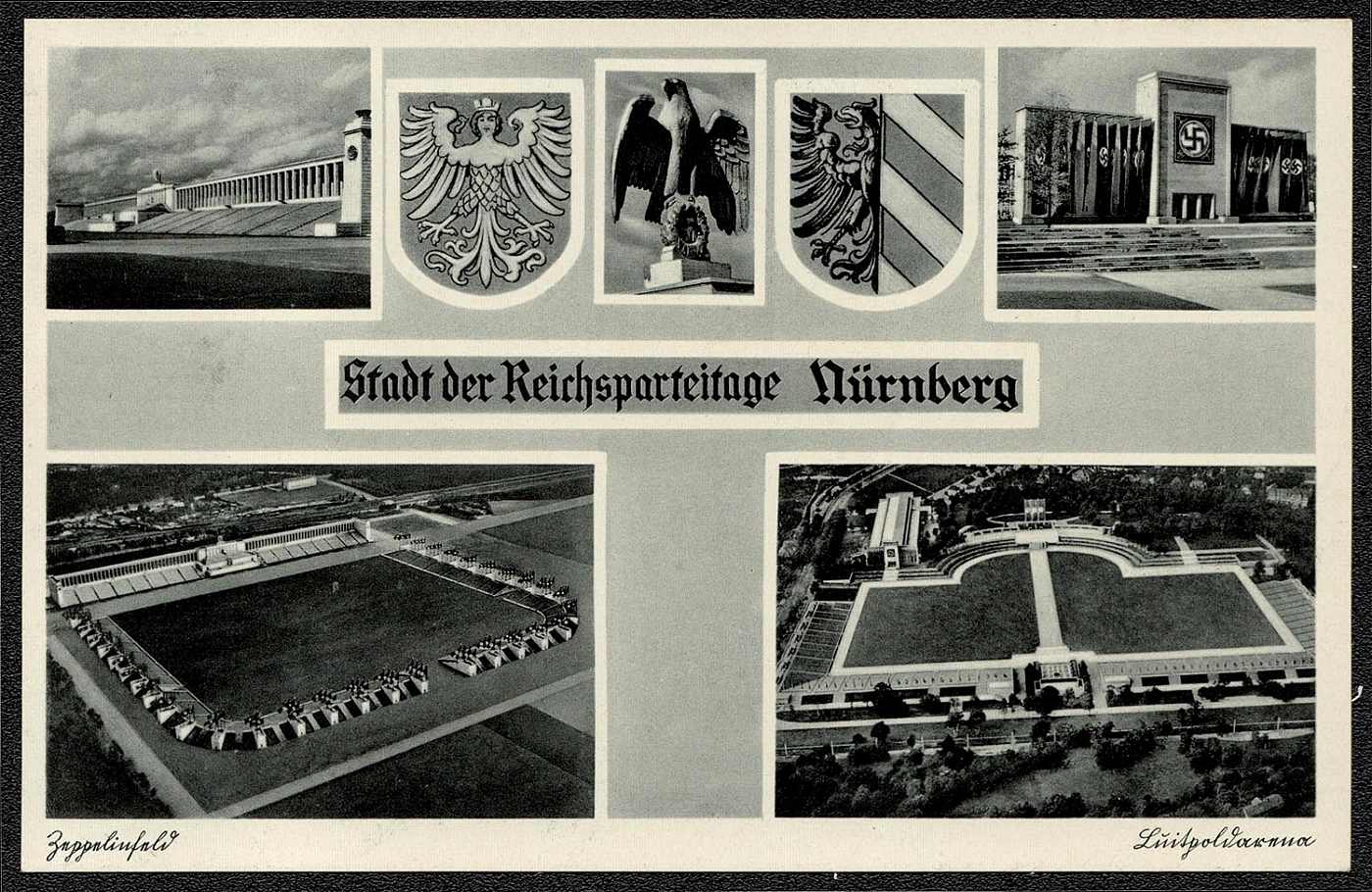
1938 Reich party rally of the NSDAP in Nuremberg
Parteitaggelande photo card No. 581 published by Stoja-Verlag Paul Janke, Nurnberg-A. Original photos taken by Hansa-Luftbild on 25.9.1937. Franked with Sc B120 and favor cancelled at Postamt 2 on the Rally Grounds 6 September 1938.
Unsold
352
$16
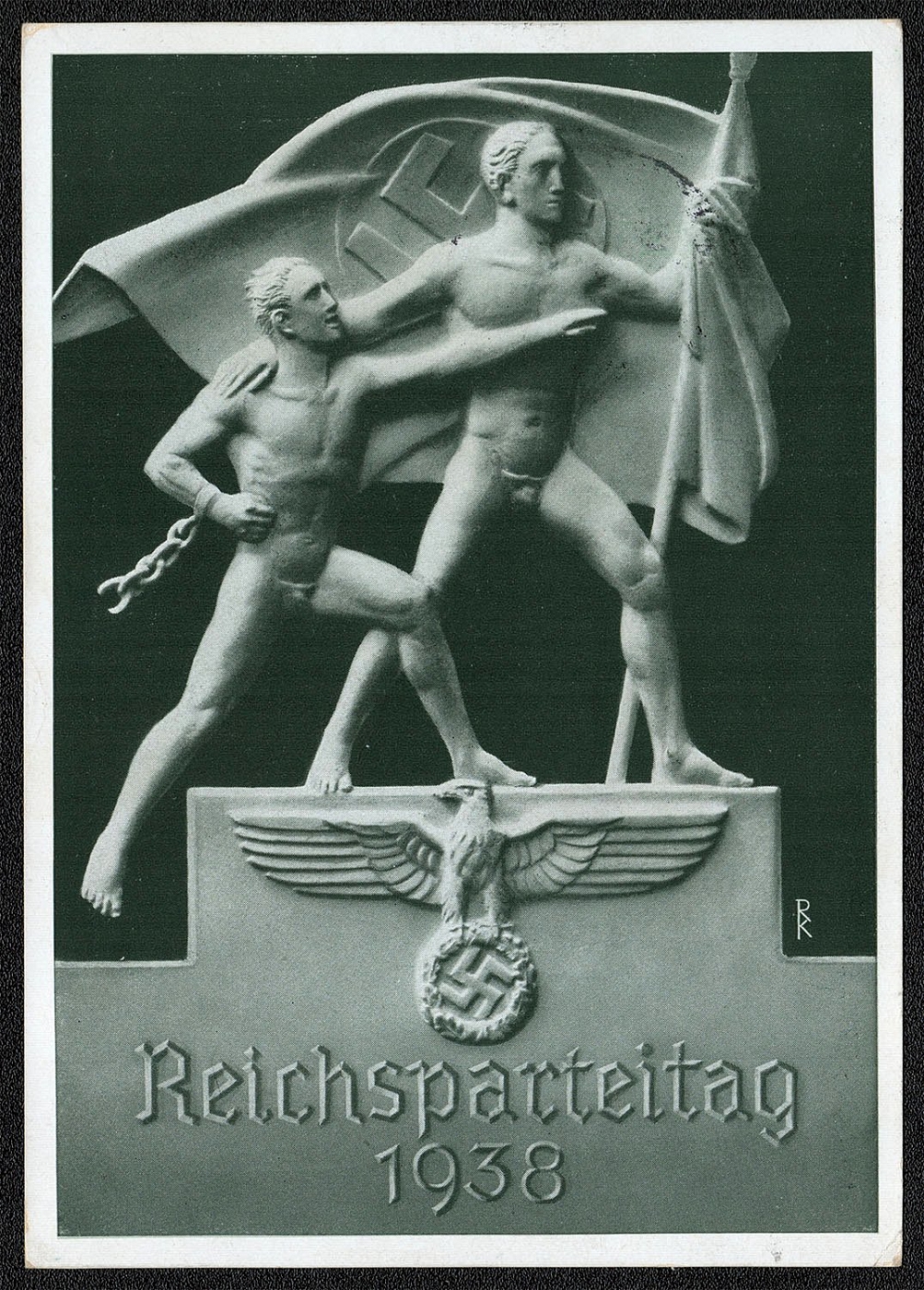
1938 Reich party rally of the NSDAP in Nuremberg, Rally Badge Motif
Hoffmann photo card No. 38/20 franked with Scott B120 and cancelled with the 1938 Parteitagssonderstempel, “c” variety, mailed from Postamt Nurnberg 2 on 8 September 1938.
Sold for:
$16
353
-
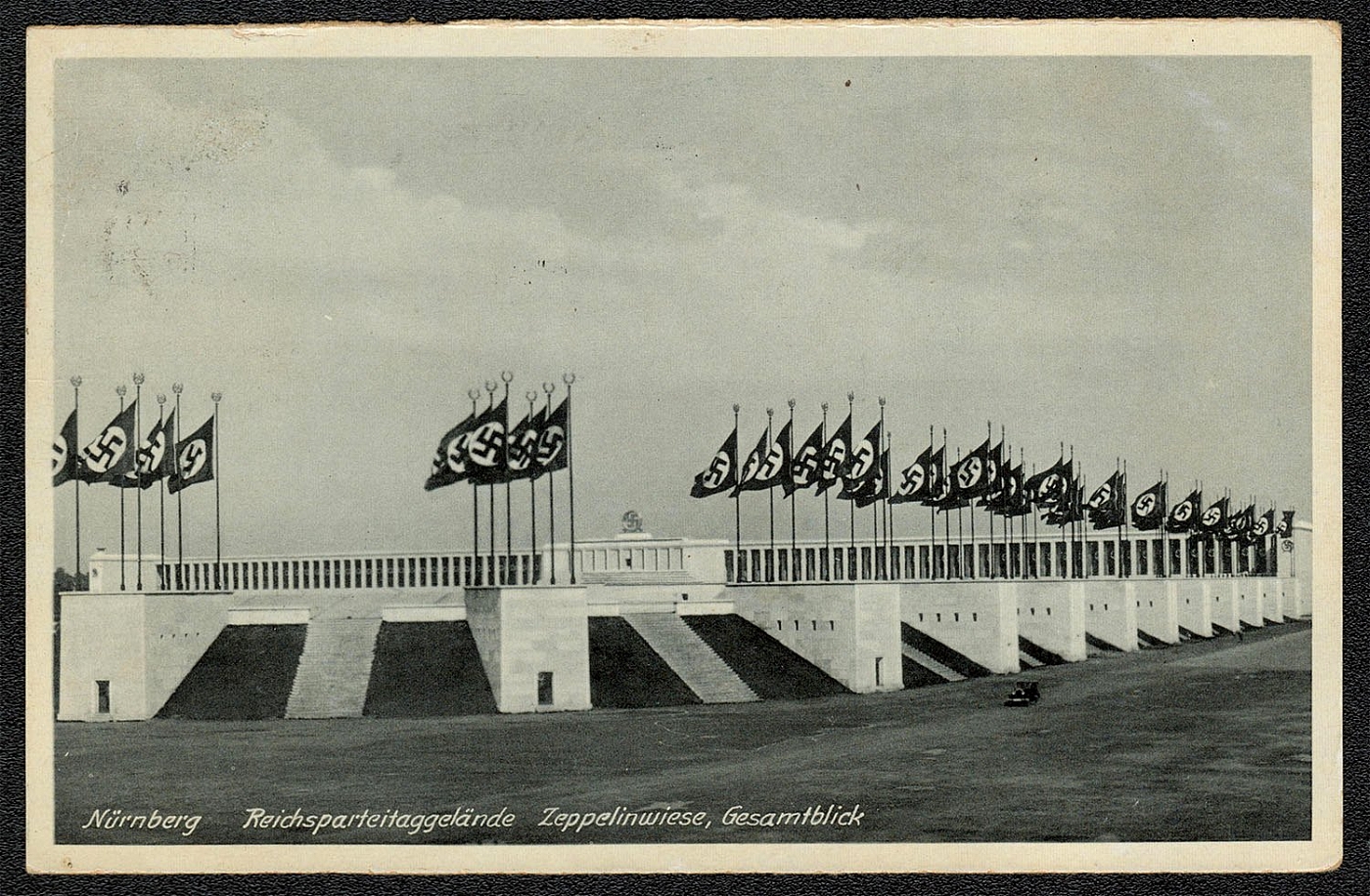
1938 Reich party rally of the NSDAP in Nuremberg, Wide angle view of the Zeppelin Field
Zeppelinwiese View Card (facsimile left) published by Verlag Otto Dollner, Nurnberg. Franked with Sc 403 and granted a favor cancel at Postamt 2 on the Rally Grounds 8 September 1938. 1938 Hakenkreuzfahnen (Swastika flag) cancel of which there are four varieties. Type IV was used on this card. It is identified by the narrow “P” in “Parteitag” and the left side of the flagpole top is missing.
Unsold
354
-
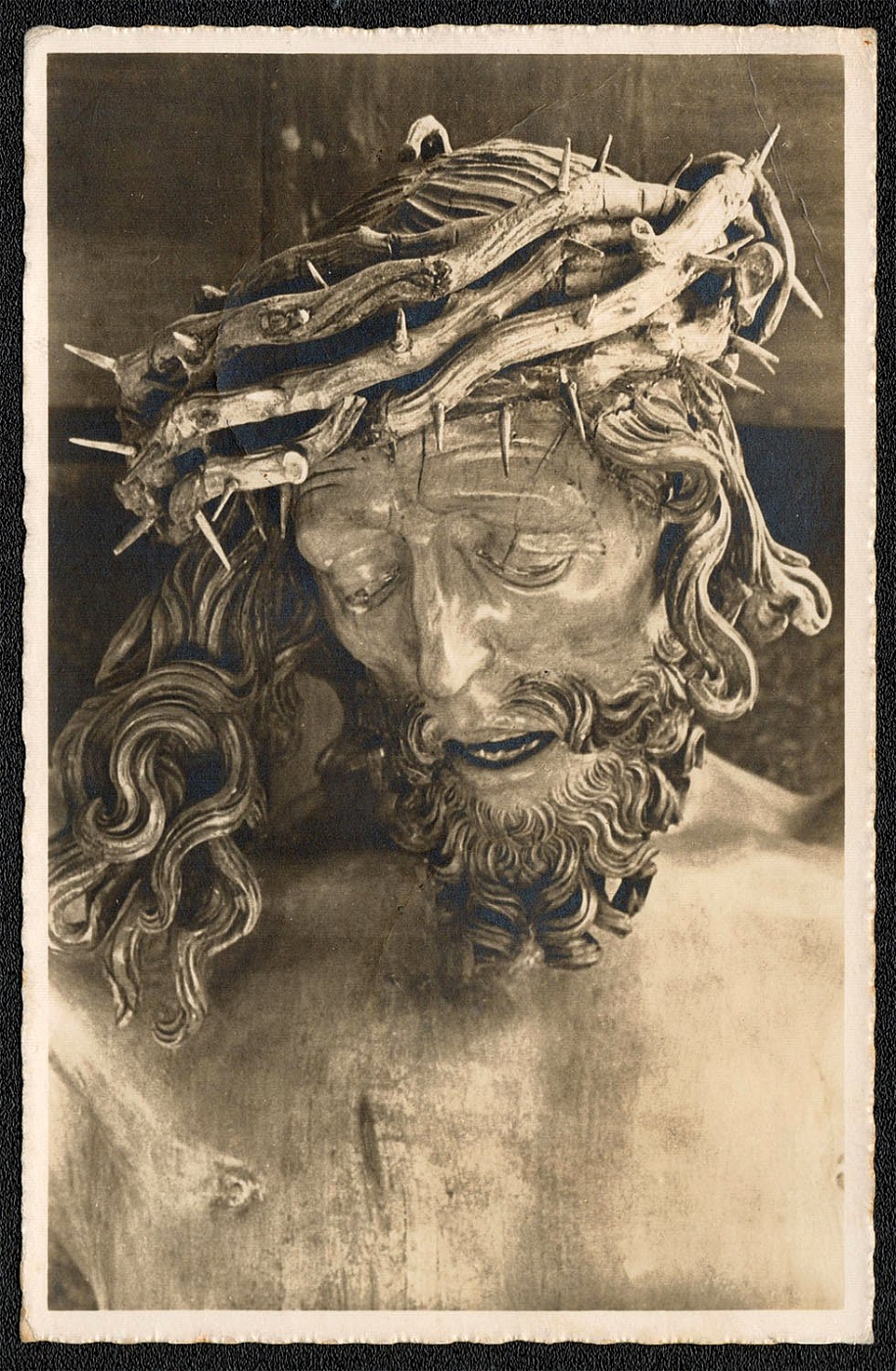
1938 Reich party rally of the NSDAP in Nuremberg, Christ from the statue sculpted by Veit Stoss
Post card dated 9 September 1938 franked with Sc B120 with control numbers. The Bossek-designed commemorative handstamp cancellation has the identifying letter “f” which, unfortunately, has not yet been associated with any particular Postamt Nurnberg. The photo side of the card depicts the face of Christ from the statue sculpted by Veit Stoss in 1520. The statue is in Nurnberg’s St. Sebaldus Church. The card was published by Stoja-Verlag Paul Janke, Nurnberg-A.
Unsold
355
-
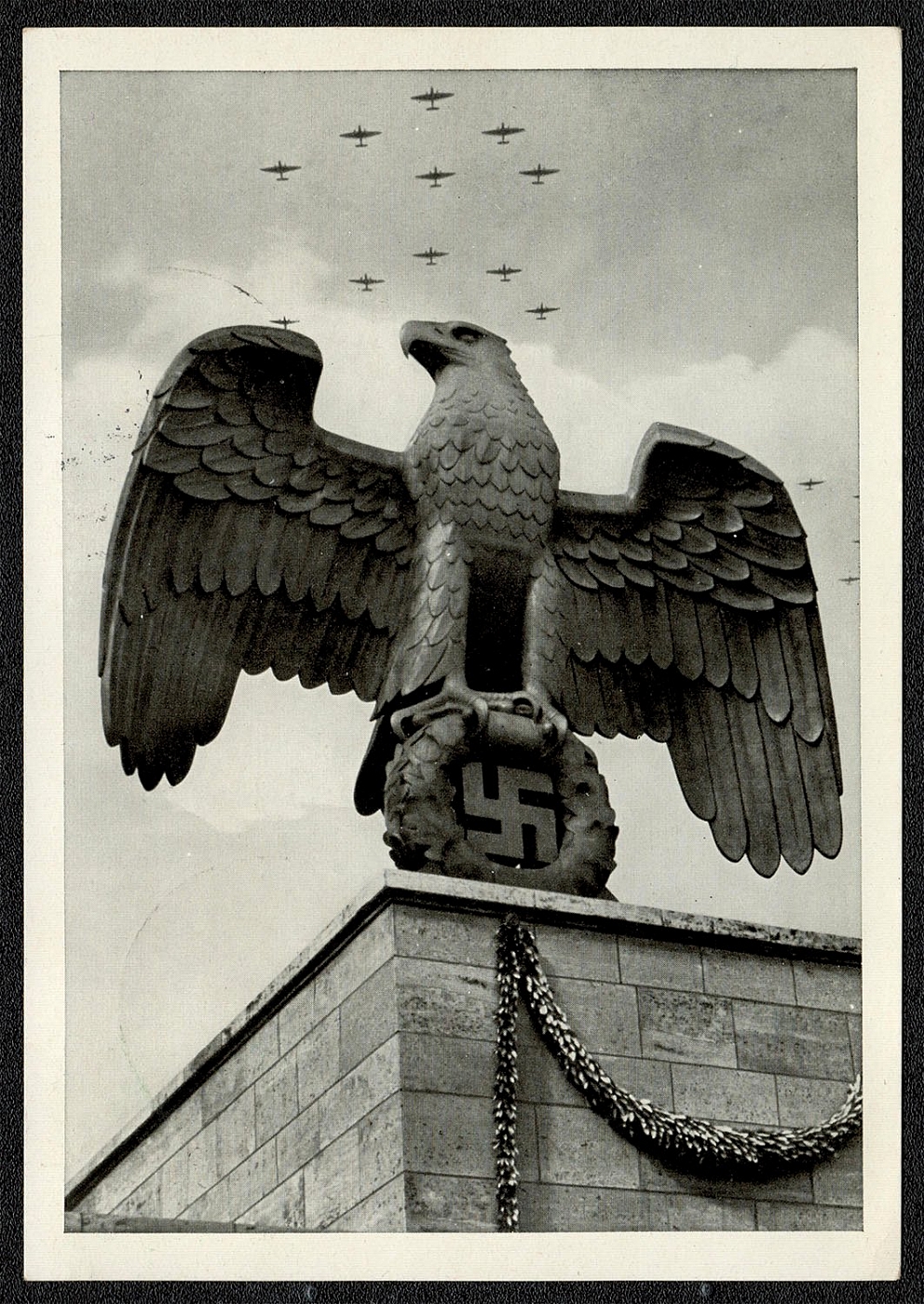
1938 Reich party rally of the NSDAP in Nuremberg, The National Eagle in the Luitpoldarena at the Reichs Party Rally Grounds
The National Eagle in the Luitpoldarena at the Reichs Party Rally Grounds View card No. 1113 published by Kunstverlag George Michel, Nurnberg-Ost. Franked with Scott B117 and B120. The Bossek-designed commemorative handstamp is Type III (a) in which the tail of the eagle points between the “a” and “g” of “tag,” and the eagle has all narrow feathers on the left side of its body. It is not known which postamt the letter “b” in the cancel identifies.
Unsold
356
$20
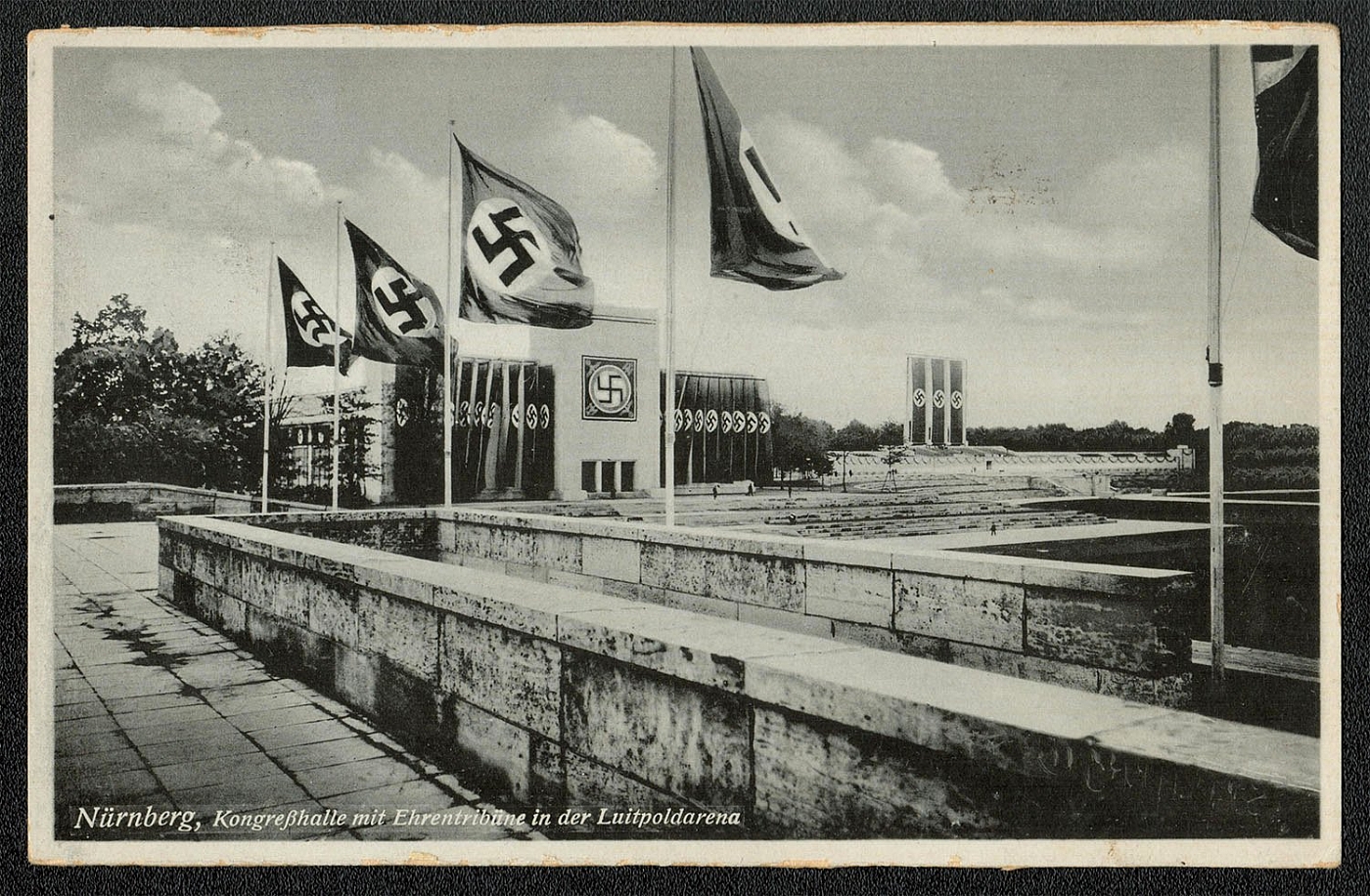
1938 Reich party rally of the NSDAP in Nuremberg, Congress Hall with Honor Tribune in the Luitpold Arena
The final design of the whole arena is based on a personal sketch of the Fuhrer. The Arena is rectangular. the Grand Stand for the Fiihrer and the Guests of Honor has been built on one long side protruding in a semi circular form. Opposite to the Grand Stand on the other side there is the Memorial of the Town of Nurnberg for her Fallen Sons, which had already been erected. The War Memorial and the Grand Stand are connected by a granite pathway, 18 m wide and 240 m long. Behind the Grand Stand there rise 4 steel masts, each 34 m high for carrying 3 Swastika Flags, each of 24 m length and 6 m width. The Rally Ground has a size of 84,000 square meters allowing for about 150,000 men. The stands for the spectators can accommodate 50,000 people. On the wide ground of the Luitpold Arena the Party Formations assemble before the Fuhrer during the Party Rally. The Fuhrer speaks to them from the tribune in front of the Grand Stand. he walks down the broad pathway, which has been kept free among the assembled formations, to the War Memorial to pay homage to the Fallen. At the same time the Bands play solemn music. The impressiveness and solemnity of this moment will be a never-to-be forgotten experience to all present.” Postally used Luitpoldarena View Card. Publisher unknown, but the card is numbered “33216 Nr 2”. Franked with Sc 403 and mailed from Postamt 2 on the Rally Grounds 8 September 1938. 1938 Hakenkreuzfahnen (Swastika flag) cancel of which there are four varieties. Type IV was used on this card. It is identified by the narrow “P” in “Parteitag” and the left side of the flagpole top is missing.
Sold for:
$20
357
-
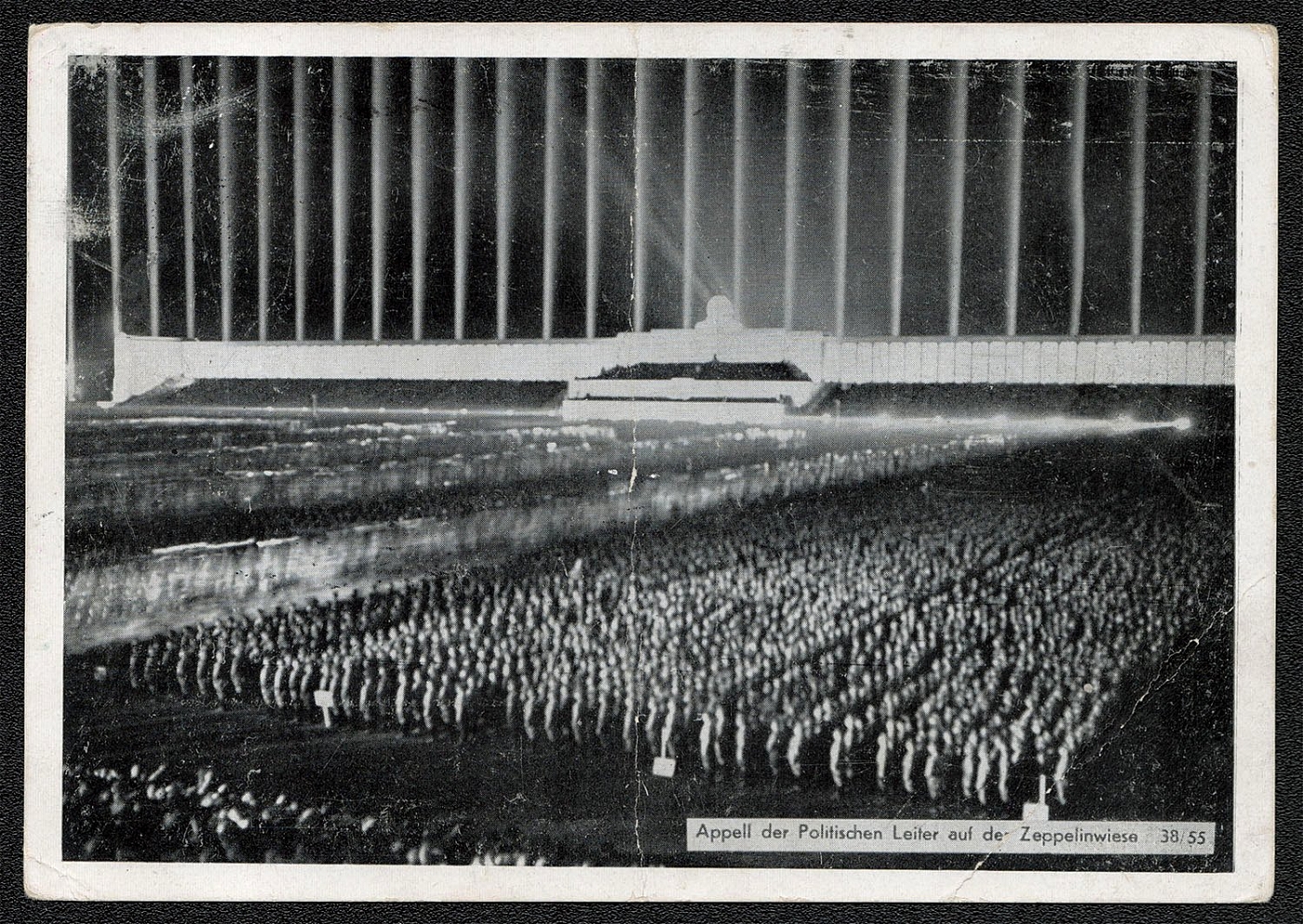
1938 Reich party rally of the NSDAP in Nuremberg, Roll Call of the Political Leaders on the Zeppelinwiese
Postally used Niirnberg Rally Photo Card No. 38/55 (facsimile left) published by Verlag Intra Nurnberg. Printer: F. Willmv G.m/b/H., Nurnberg. 1938 Hakenkreuzfahnen (Swastika flag) cancel of which there are four arieties. The one used on this card is Type III where the left side of the flagpole top is missing and the “P” in “Parteitag” is relatively wide. Franked with Sc 403 and mailed from Post amt Nurnberg 2 on 10 September 1938.
Unsold
358
$16
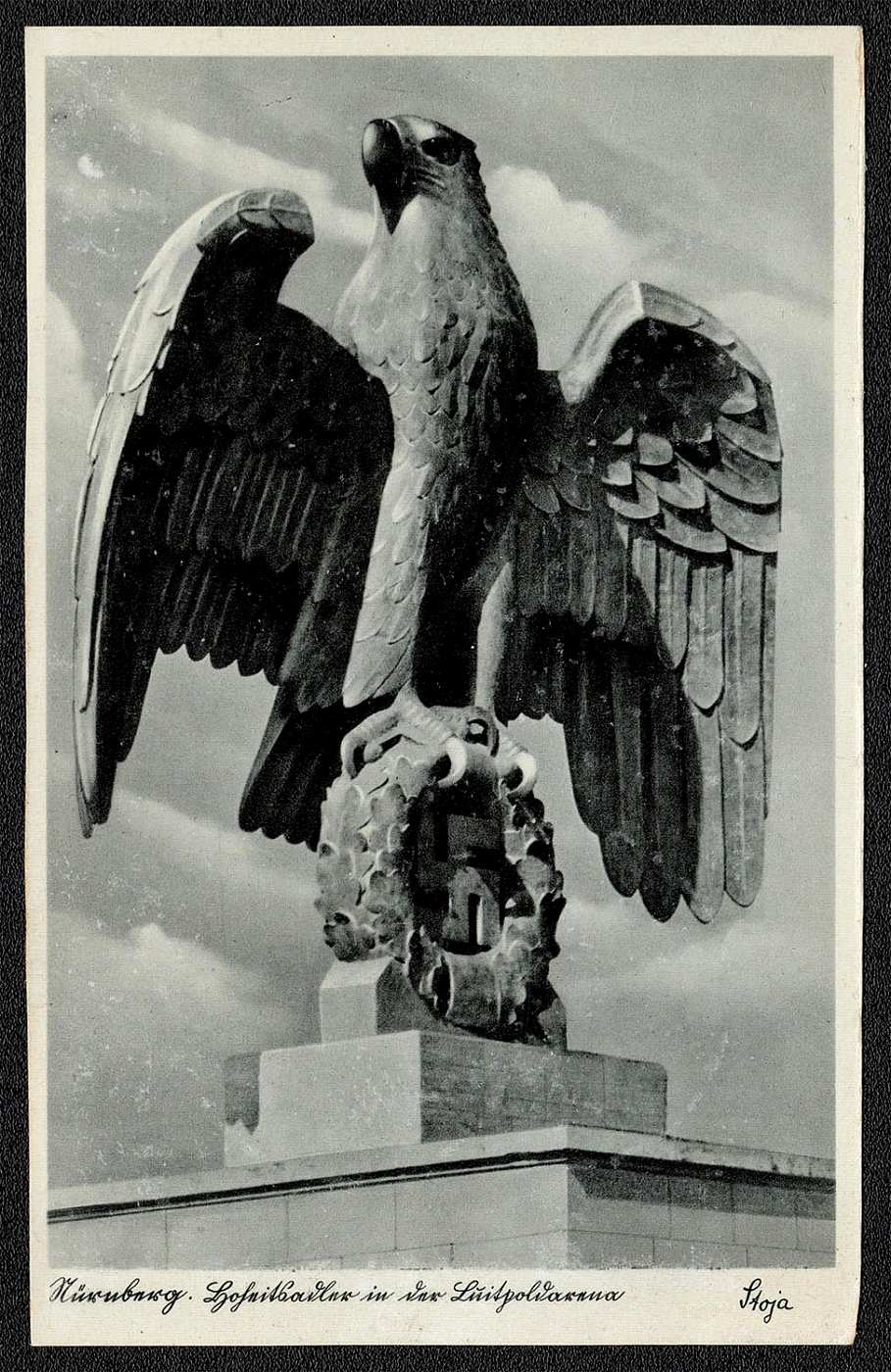
1938 Reich party rally of the NSDAP in Nuremberg, One of the monumental emblems in the Luitpoldarena
Nurnberg Rally photo card No.561 published by Stoja-Verlag Paul Janke, Nurnberg-A.
Sold for:
$16
359
$16
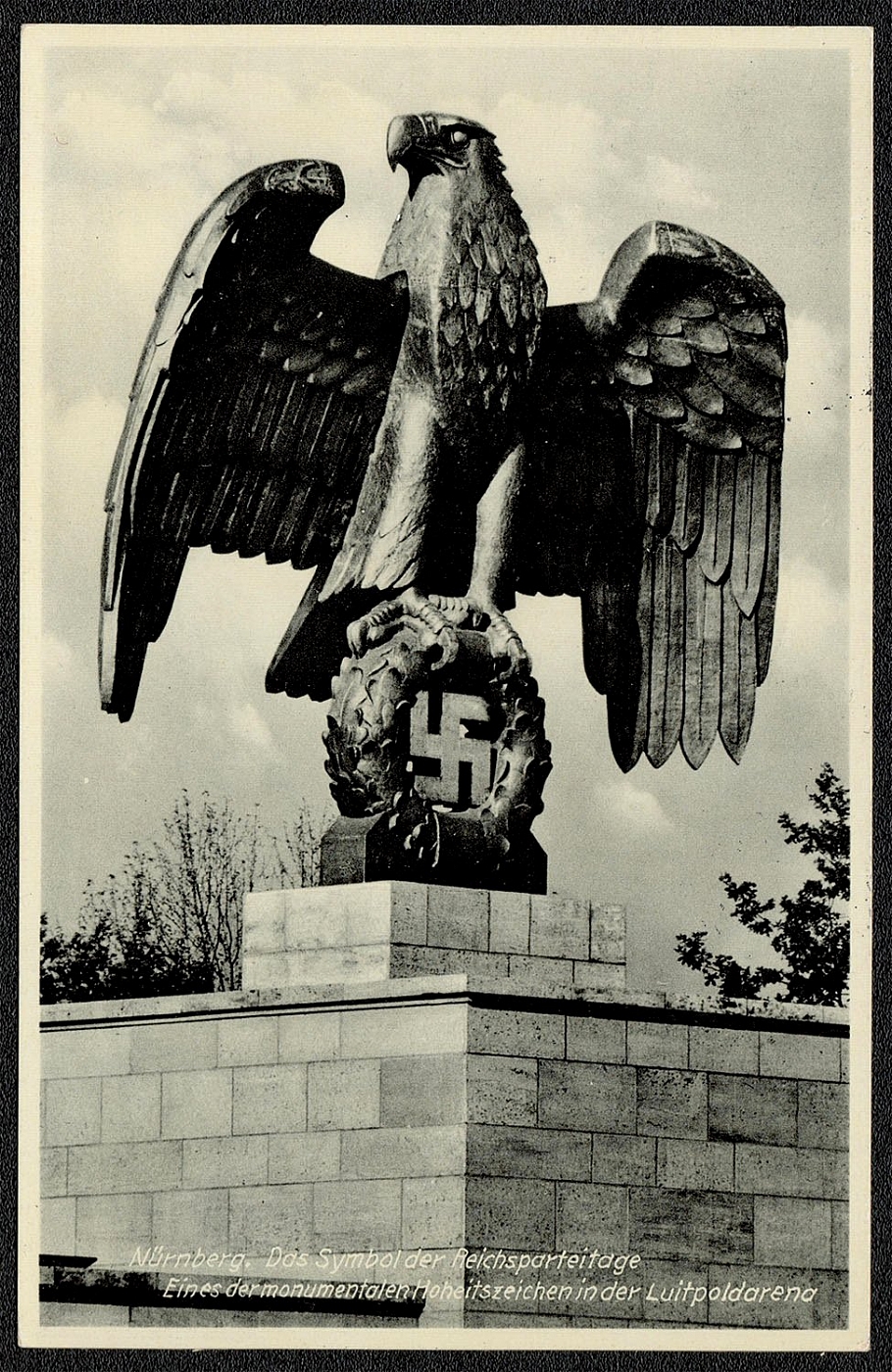
1938 Reich party rally of the NSDAP in Nuremberg, One of the monumental emblems in the Luitpoldarena (2)
Postally used Nurnberg Rally photo card published by Verlag von Ludwig Rifflcmacher, Fiirth 1 Bayern Falklandstresse 107. Franked with Sc 102a, cancelled with Bossek design Type II Parteitagshandstempel with rounded loop “a” and mailed from Niirnberg 2 on 10 September 1938.
Sold for:
$16
360
-
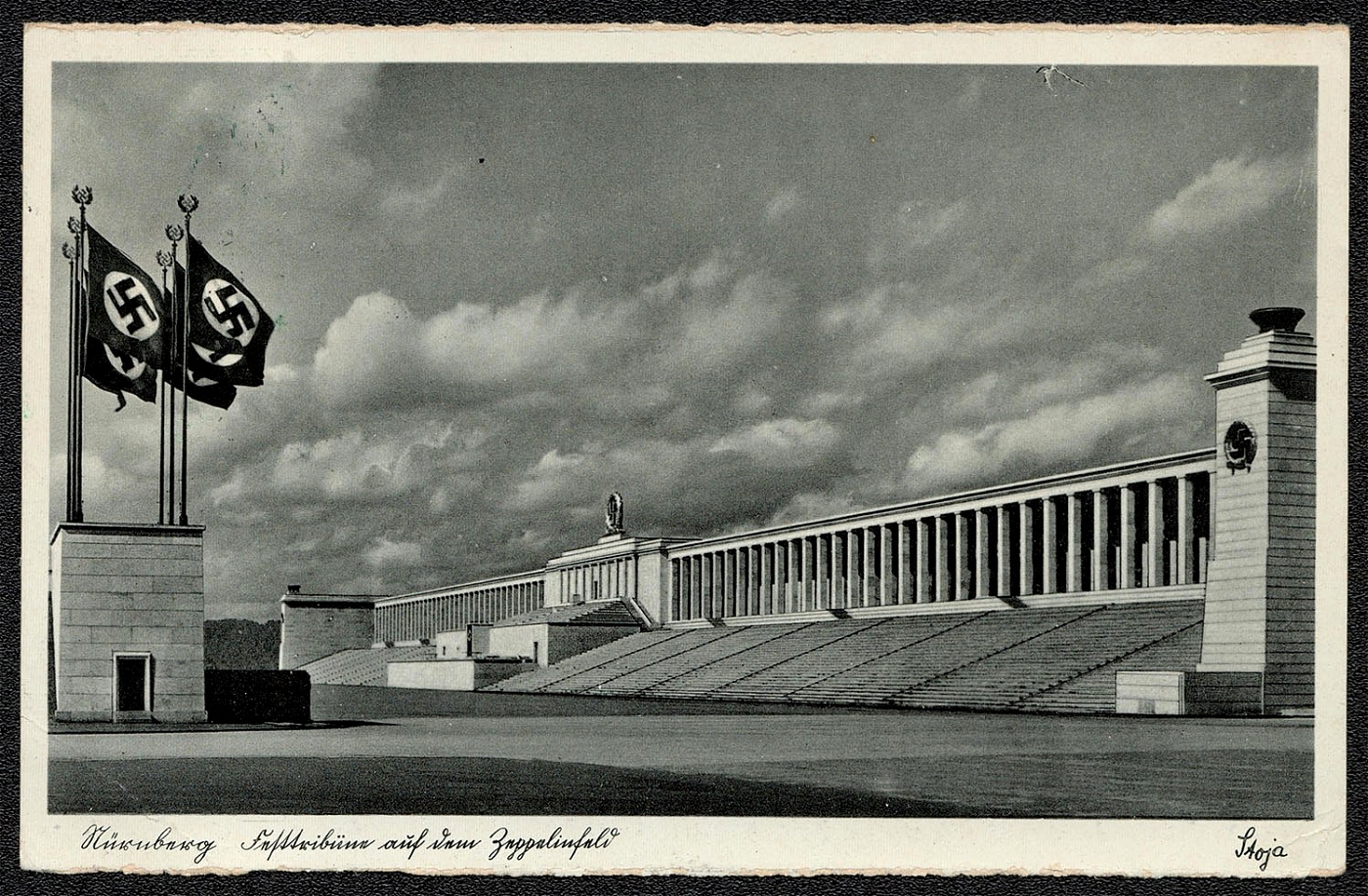
1938 Reich party rally of the NSDAP in Nuremberg, Tribune of the Zeppelin Field
The Grand Stand of the Zeppelin Field is built of natural Jura stone. The central part of the Stand rises to a height of 23 m. On the left and on the right, Pillared Halls of almost the same height are annexed and flanked by power structures. The Halls are formed by 144 pillars of 90/90 transverse section and 8.80 m. height. During the Party Rally the Fuhrer speaks from the Grand Stand. There the Flags of the Movement, the Guests of Honor, and the Representatives of Party and State also find their place. Postally used Nurnberg Rally photo card No. 598 published by Stoja-Verlag Paul Janke, Nurnberg-A. Franked with Sc 120, cancelled with Bossek design Type III Parteitagshandstempel with the eagle’s tail between the “a” and “g” of “tag”. The identifying “c” in the cancel indicates it was mailed from Postamt Nurnberg 2 on 10 September 1938.
Unsold
361
$30
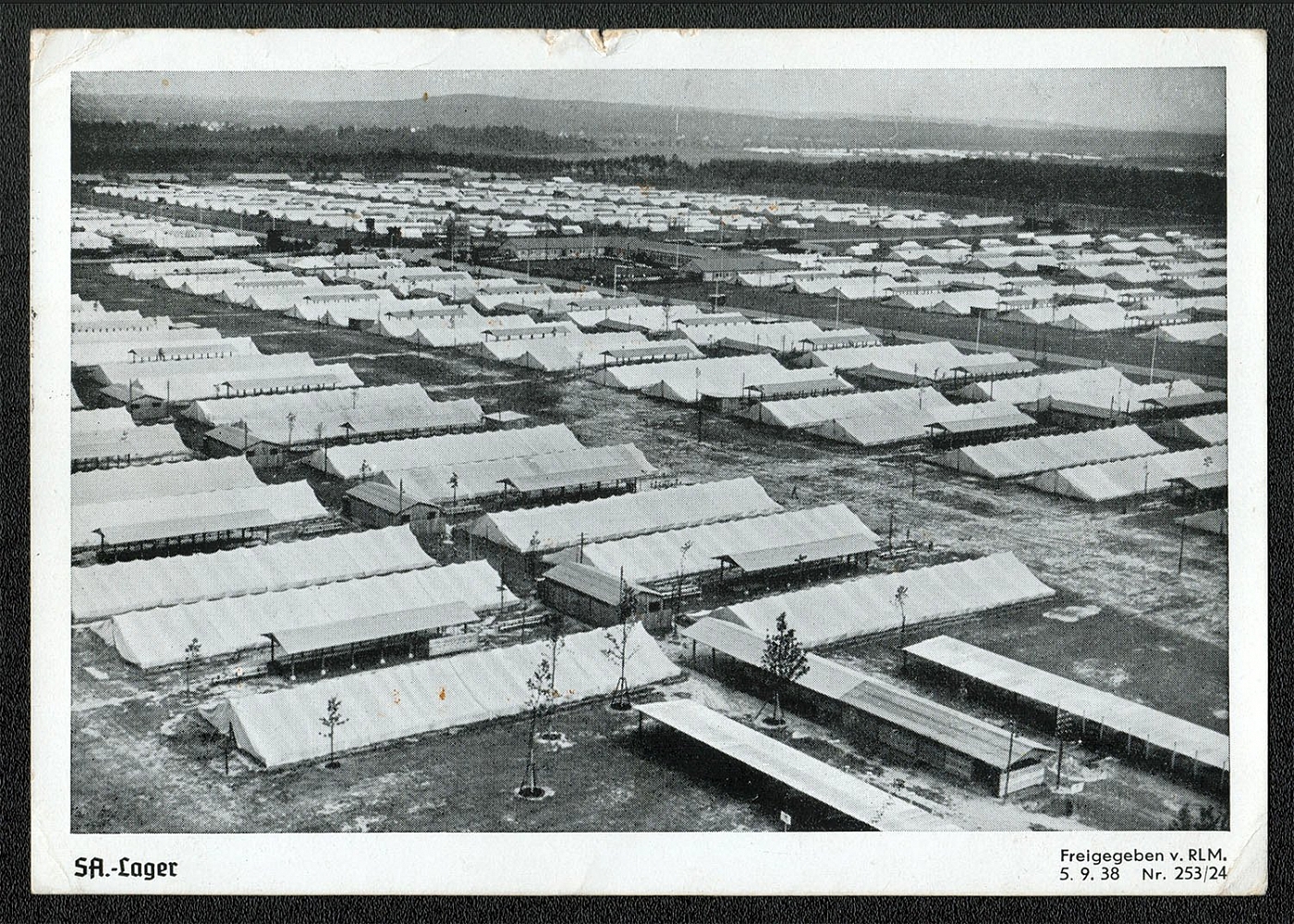
1938 Reich party rally of the NSDAP in Nuremberg, SA Encampment
The SA or Sturmabteihing (Storm Division. commonly known as the Storm Troopers) was originally organized in 1921when Hitler brought together tested brawlers in the early days of his political ascendency in Munchen. At that time, the SA primarily consisted of WWI veterans. By the time Hitler became chancellor in 1933 its ranks had risen to nearly 700,000. In the ensuing months, however, the SA hierarchy lost favor with Hitler and in 1934 some 50 SA leaders were murdered by the SS on his orders. Even so, by 1938, its membership was over a million. With the outbreak of WWII in 1939, the SA took over the training of military conscripts. Postally used Niirnberg Rally Photo Card No. 253/24 It would appear from the notation on the card’s photo side (Freigegeben v. RLM, i.e., Released by RLM.) that the original photograph was not taken by Prof. Heinrich Hoffmann, the vaunted Reichsbildberichterstatter der NSDAP. (Photo Correspondent of the NSDAP.)
Sold for:
$30
362
-
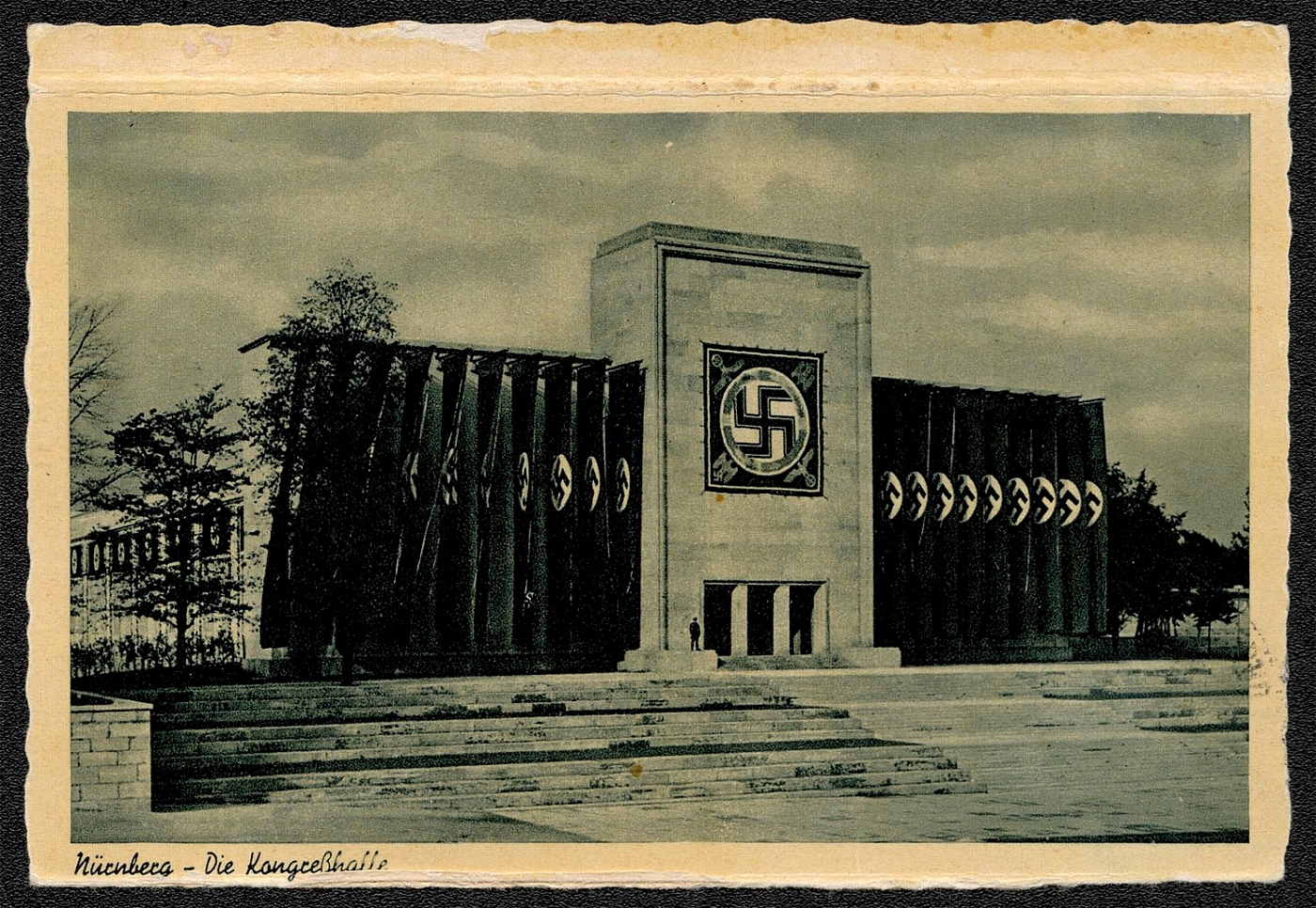
1938 Reich party rally of the NSDAP in Nuremberg, Misidentified by the publisher as “The Congress Hall”
"""Built in 1906 as Hall of Machinery the Luitpoid-Hali first served for exhibition purposes and later as assembly place for great political demonstrations. In order to accommodate the Party Rallies it has been rebuilt by order of the Fuhrer. At the front and the back powerful structures have been added, more efficient entrances provided. in addition a magnificent organ has been built at the rear of the Hall. The Luitpold-Hall is 18 m high, 180 m long, 50 m wide and has an area of 9,000 square meters. It contains about 16,000 seats or standing room for 30,000 people. For the duration of the Party Rally the Hall is simply and tastefully decorrated every year. During these days the wide Hall is crowded with enthusiastic people. In the presence of the Fiihrer the large platform is occupied by the leading members of the National Socialist Movement and its Branches, whilst in the background the bright standards are arranged. Together with them the numerous guests of honor and the various uniforms make a lasting impression on the visitor.” Luitpold Hall View Card (facsimile left) published by Verlag Otto Dollncr, Nurnberg. Franked with Sc 403 and posted At Postamt 2 on the Rally Grounds 10 September 1938. 1938 Hakcnkreuzfahnen (Swastika flag) cancel of which there are four varieties. Type III was used on this card. It is identified by the wide “P” in “Parteitag” and the left side of the flagpole top is missing."
Unsold
363
$16
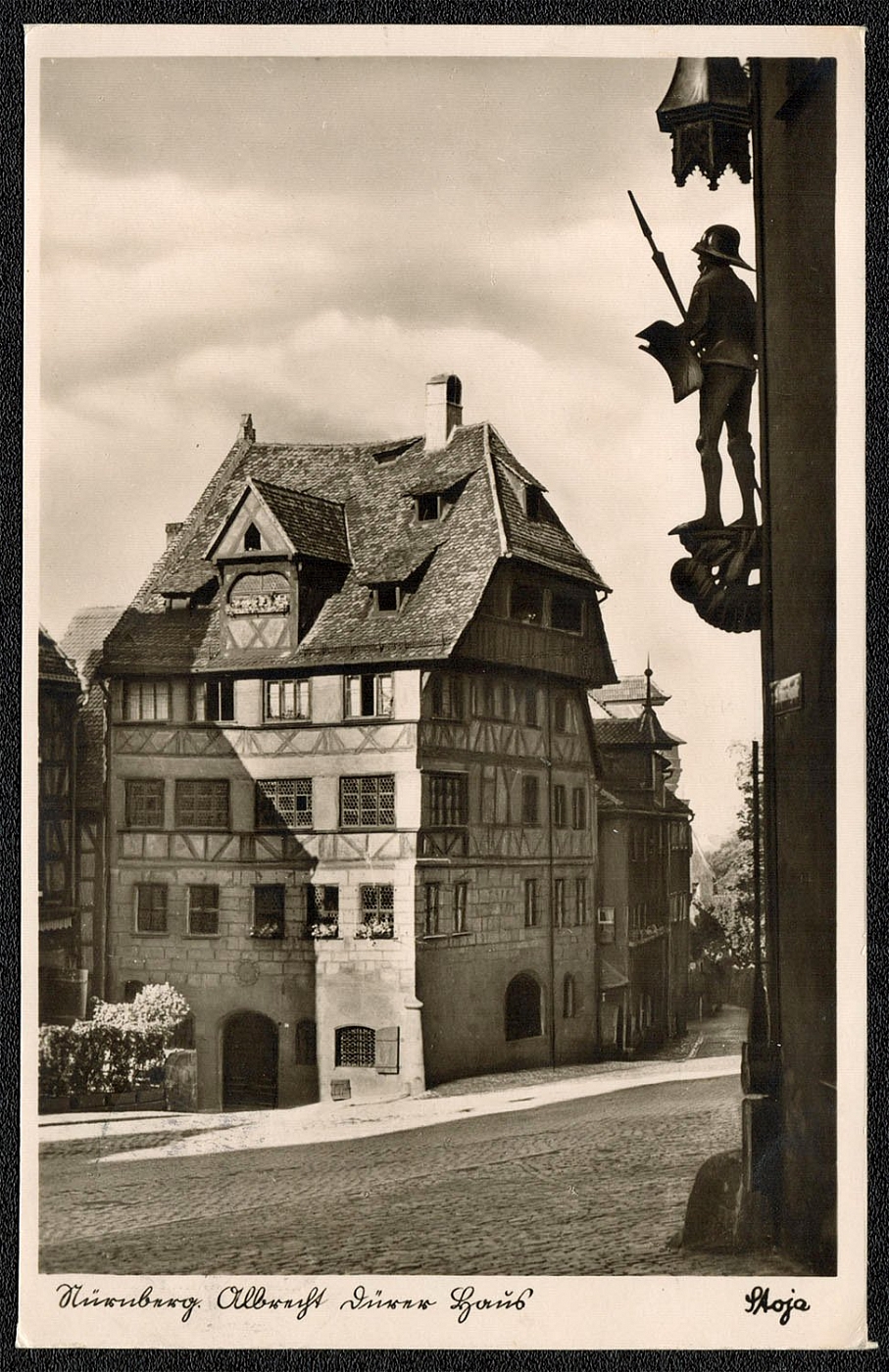
1938 Reich party rally of the NSDAP in Nuremberg, Albrecht Dürer House Stoja
Postally used Diirer View Card No. 5028 (facsimile left) published by Stoja-Verlag Paul Janke, Nurnberg A. Franked with Sc 403 and mailed from Postamt 2 on the Rally Grounds 11 September 1938. Albrecht Diirer is generally regarded as the greatest German Renaissance artist. He was born on 21 May 1471 in Nurnberg and began as an apprentice to his father (a Hungarian goldsmith) in 1485, but his earliest known work—a self portrait—was made in 1484. His vast body of art includes alter pieces, religious works, portraits, copper engravings and woodcuts. He died in Nurnberg on 6 April 1528.
Sold for:
$16
364
-
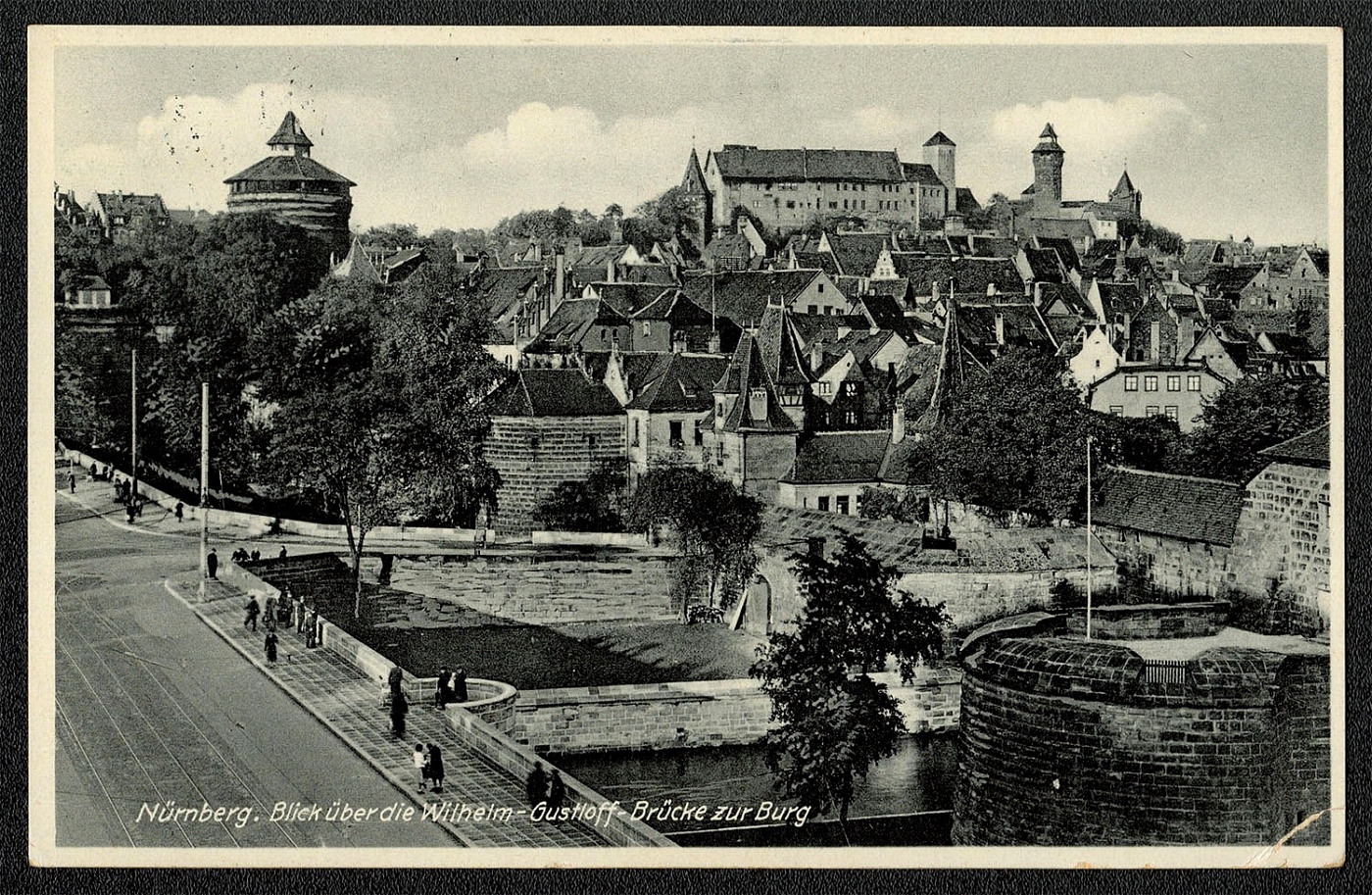
1938 Reich party rally of the NSDAP in Nuremberg, View across the Wilhelm-Gustloff Bridge to the Castle
Photo card published by Verlag Ludwig Riffclmachcr, Furth 1 Bayern, Wurzburger Strasse 201, Nurnberg. Franked with Sc B120 and cancelled with the 1938 version of the 1937 Bossek designed Parteitagshandstenipel of which there are several varieties. the card above exhibits Type III with the eagle’s tail between the “a” and “g” of “tag”. Although it was mailed from Nurnberg on 11 September 1938. it is unknow n which particular post office used the canceller with the identifying “d” in the lower left quadrant.
Unsold
365
-
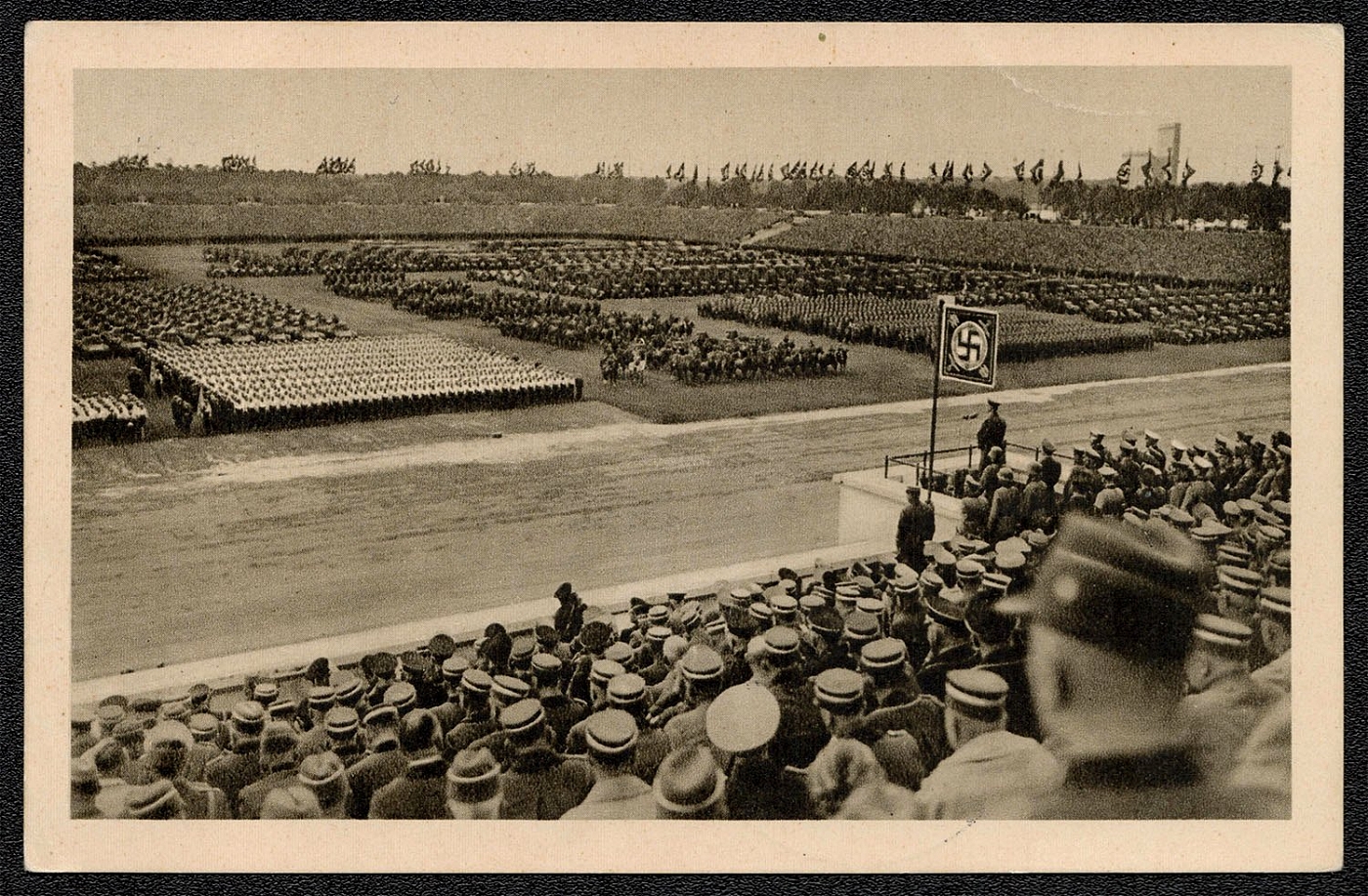
1938 Reich party rally of the NSDAP in Nuremberg, Day of the Wehrmacht
Favor cancellations on Day of the Wehrmacht photo card franked w ith Sc 415 on 12 September 1938.
Unsold
366
$40
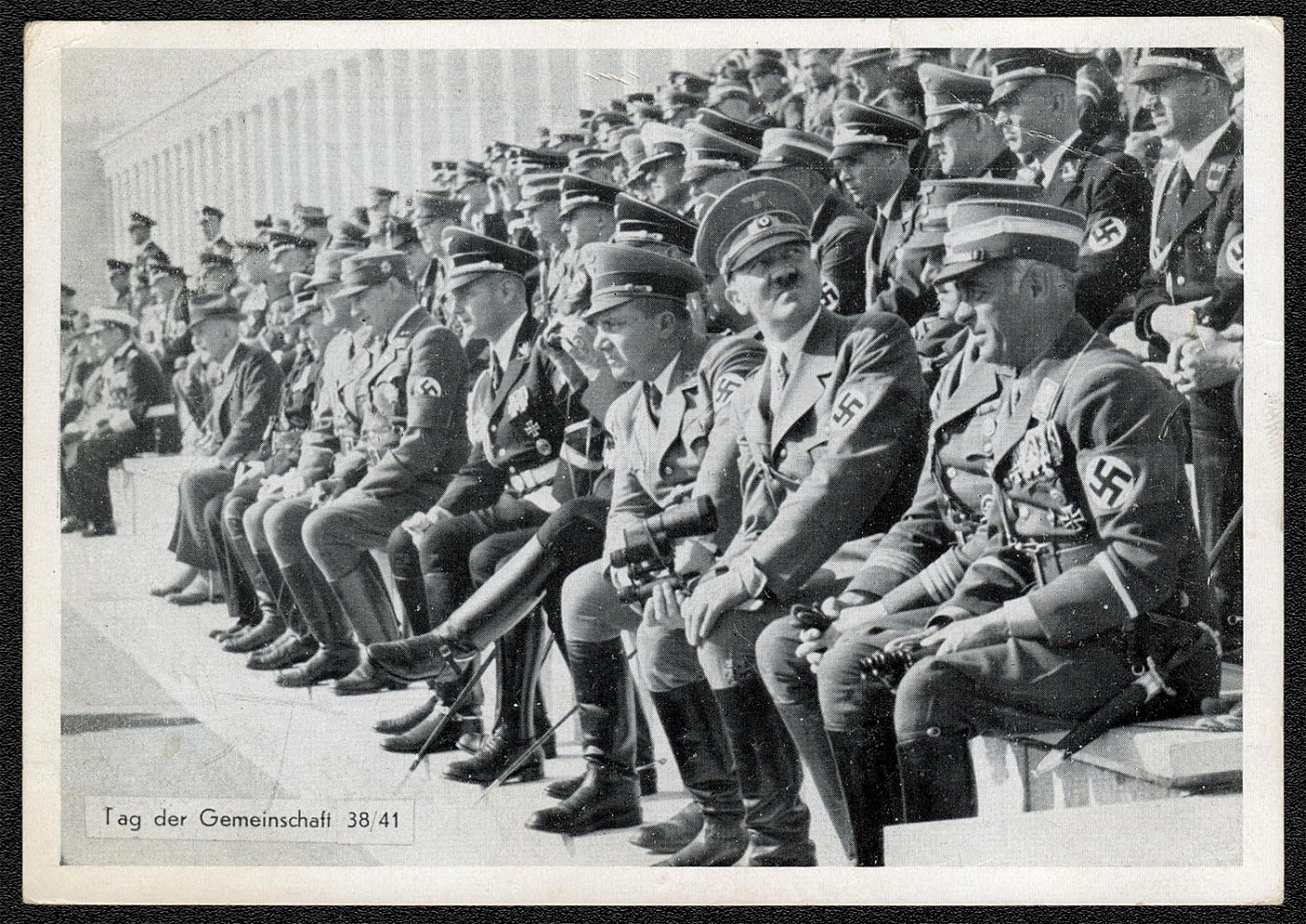
1938 Reich party rally of the NSDAP in Nuremberg, Day of Community
Photo card entitled “Tag der Gemeinschaft” (Day of Community) franked with Sc Nos. B117 and B120 exhibiting the Bossek cancel, Type II (b) “a” and posted in Nurnberg 2 on 13 September 1938. Published by Verlag Intra Nurnberg. printed by F. Willmy G.m.b.H., Nurnberg. Series 38/41
Sold for:
$40
367
$40
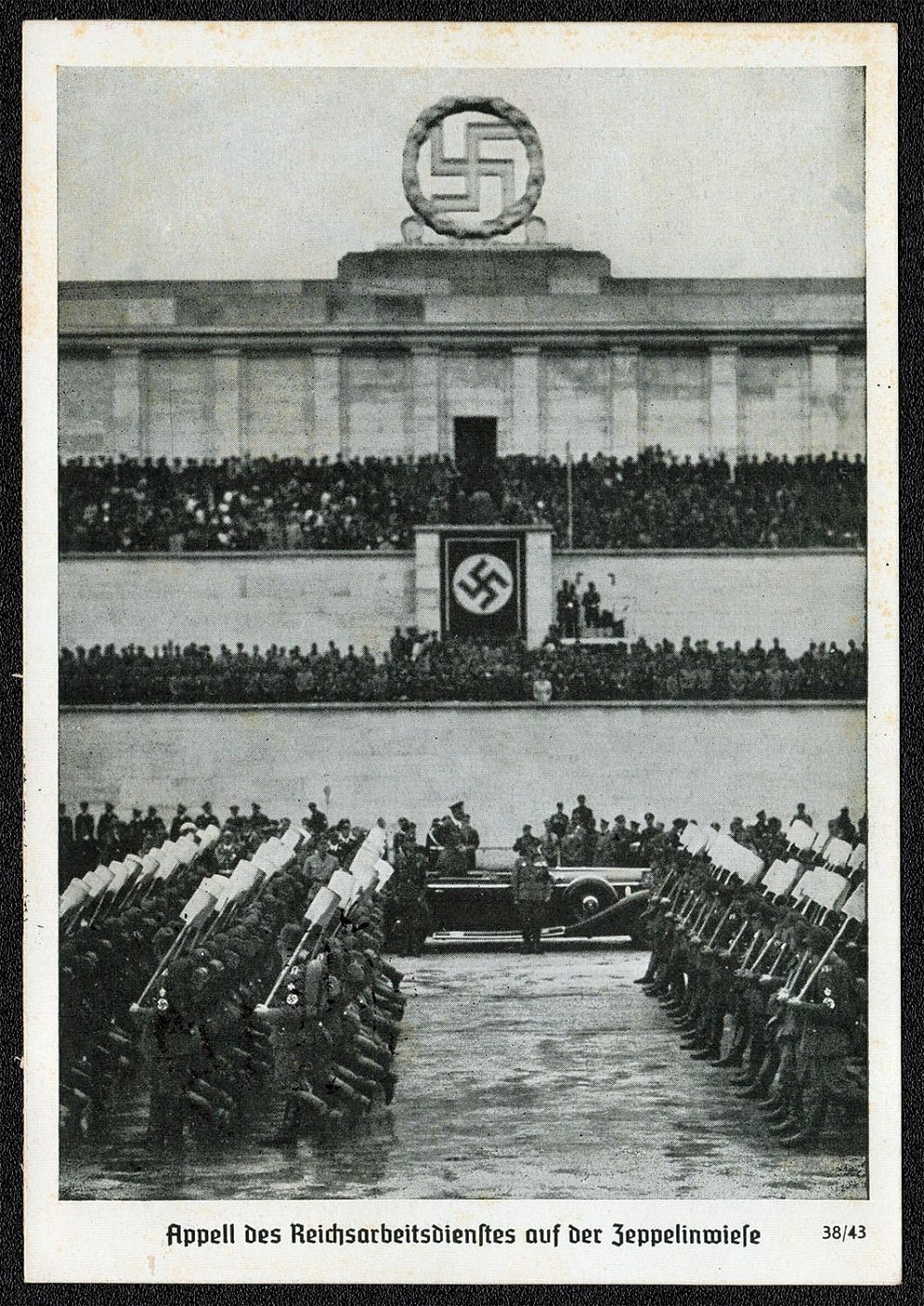
1938 Reich party rally of the NSDAP in Nuremberg, Roll call of the Reichsarbeitsdientes on the Zeppelinwiese
Roll call of the Reichsarbeitsdientes on the Zeppelinwiese
Sold for:
$40
368
$16
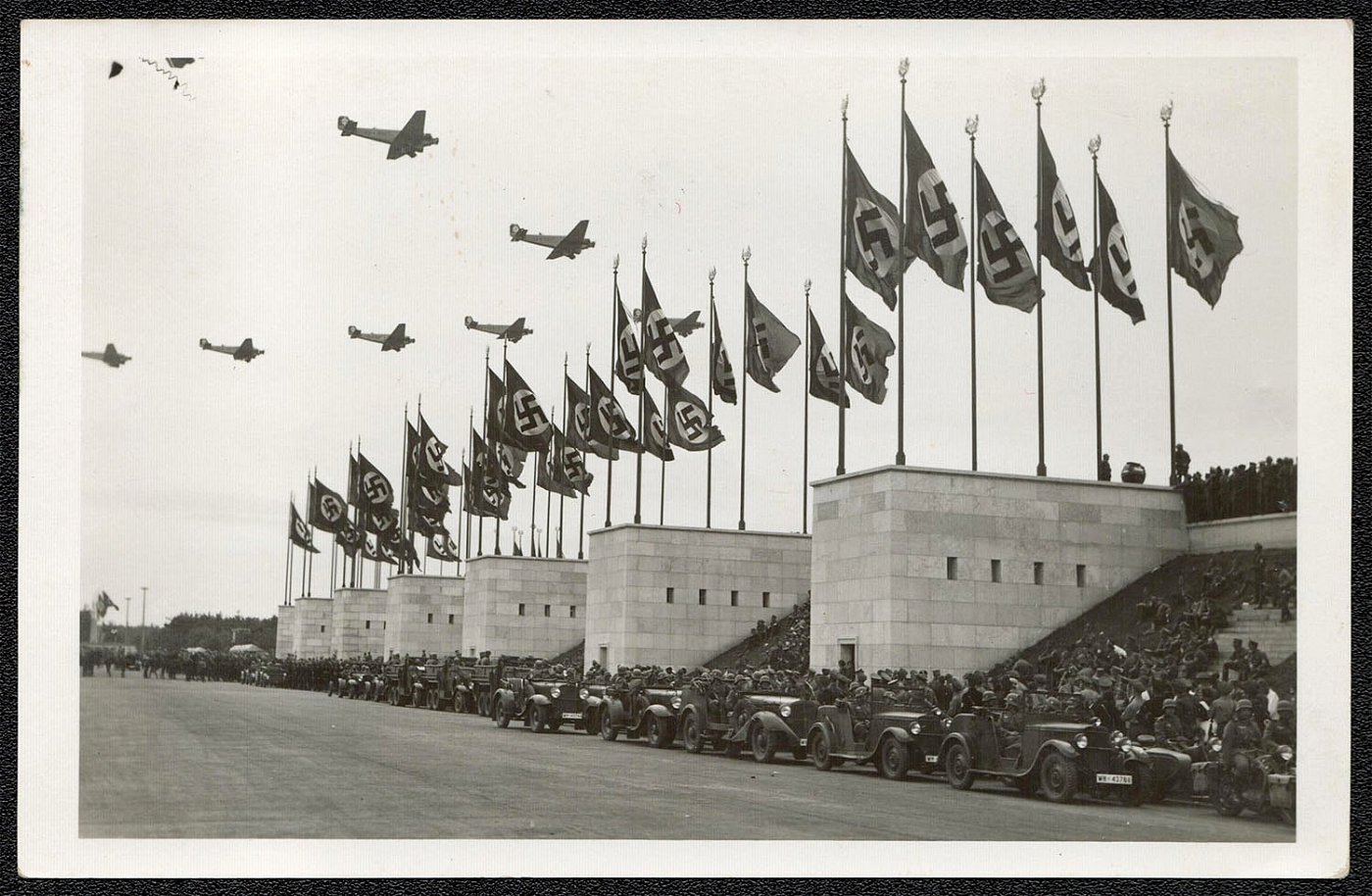
1938 Reich party rally of the NSDAP in Nuremberg, Färberstrasse and Allersberger Strasse
Färberstrasse and Allersberger Strasse
Sold for:
$16
369
-
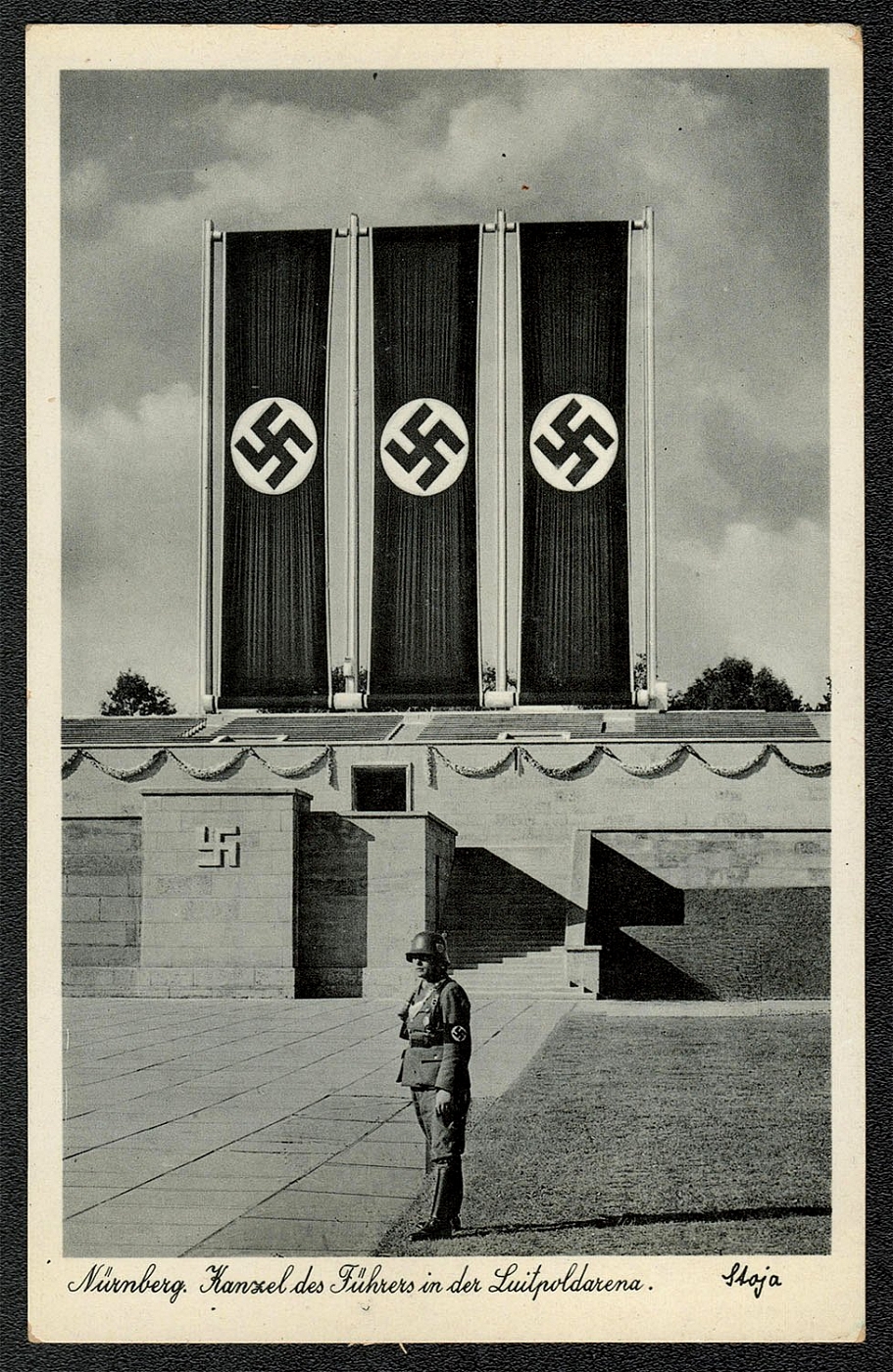
1938 Reich party rally of the NSDAP in Nuremberg, The Fuhrer’s podium in the Luitpold Arena
The Fuhrer’s podium in the Luitpold Arena) View card (592) published by Stoja-Verlag Paul Janke, Nurnberg-N circa 1938.
Unsold
370
$20
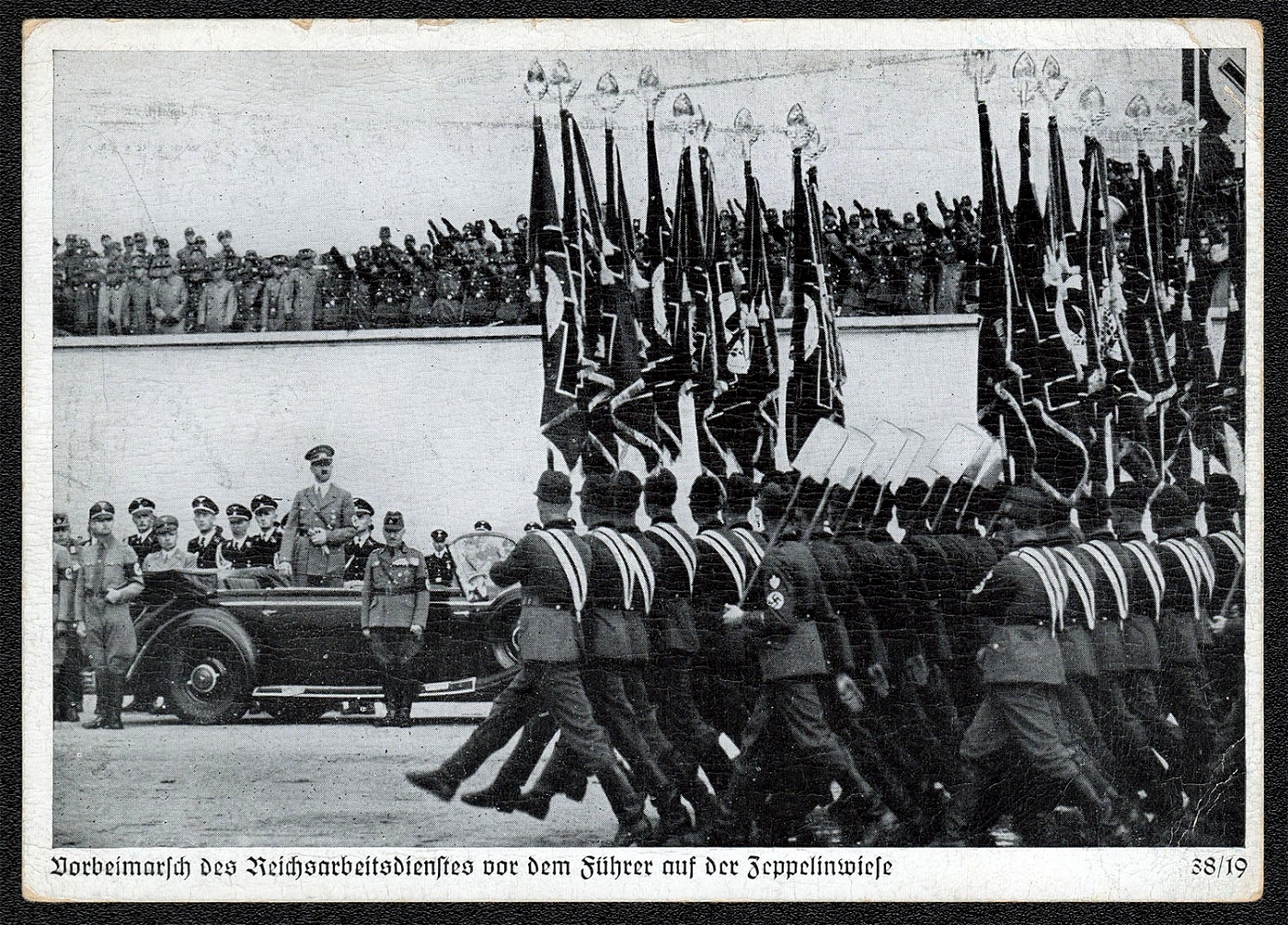
1938 Reich party rally of the NSDAP in Nuremberg, The Fuhrer’s podium in the Luitpold Arena
The Fuhrer’s podium in the Luitpold Arena) View card (592) published by Stoja-Verlag Paul Janke, Nurnberg-N circa 1938.
Sold for:
$20
371
-
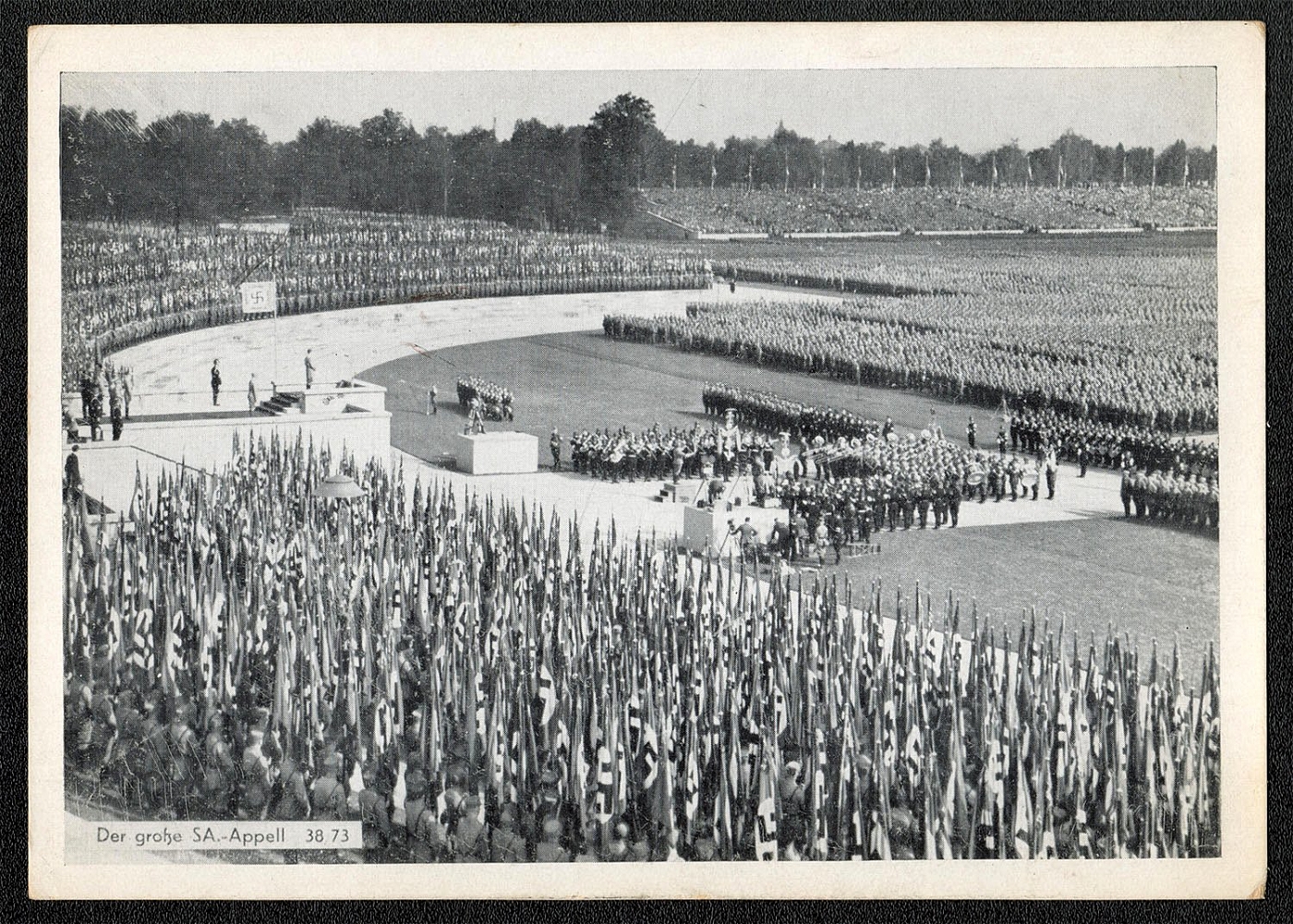
1938 Reich party rally of the NSDAP in Nuremberg, The Grand S.A. Roll Call
Unused View Card No. 38.73 published by Verlag Intra Nurnberg. printed by F. Willmy G. m. H., Nurnberg.
Unsold
372
-
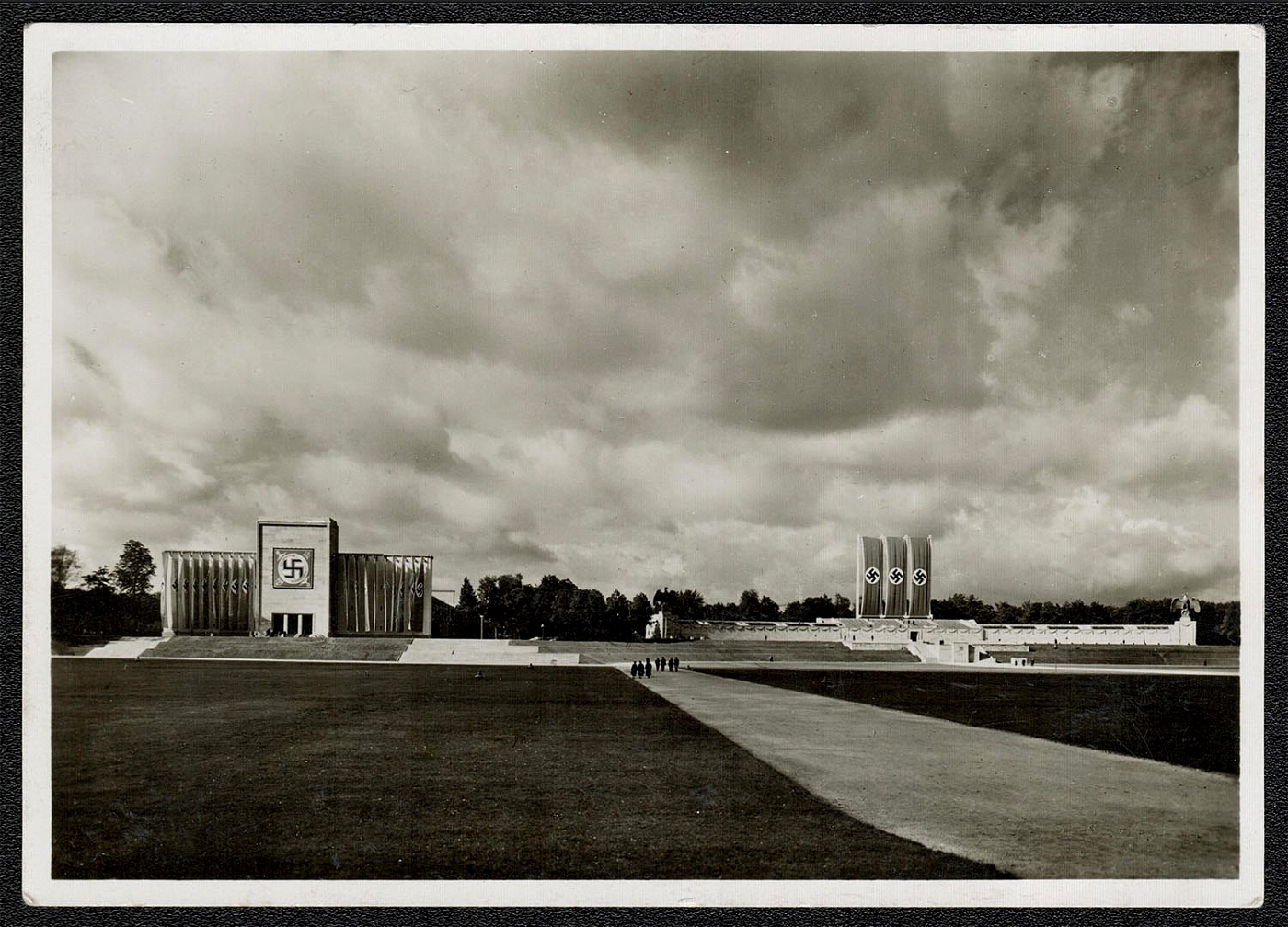
1938 Reich party rally of the NSDAP in Nuremberg, The Stadium
1938 Reich party rally of the NSDAP in Nuremberg, The Stadium
Unsold
373
-
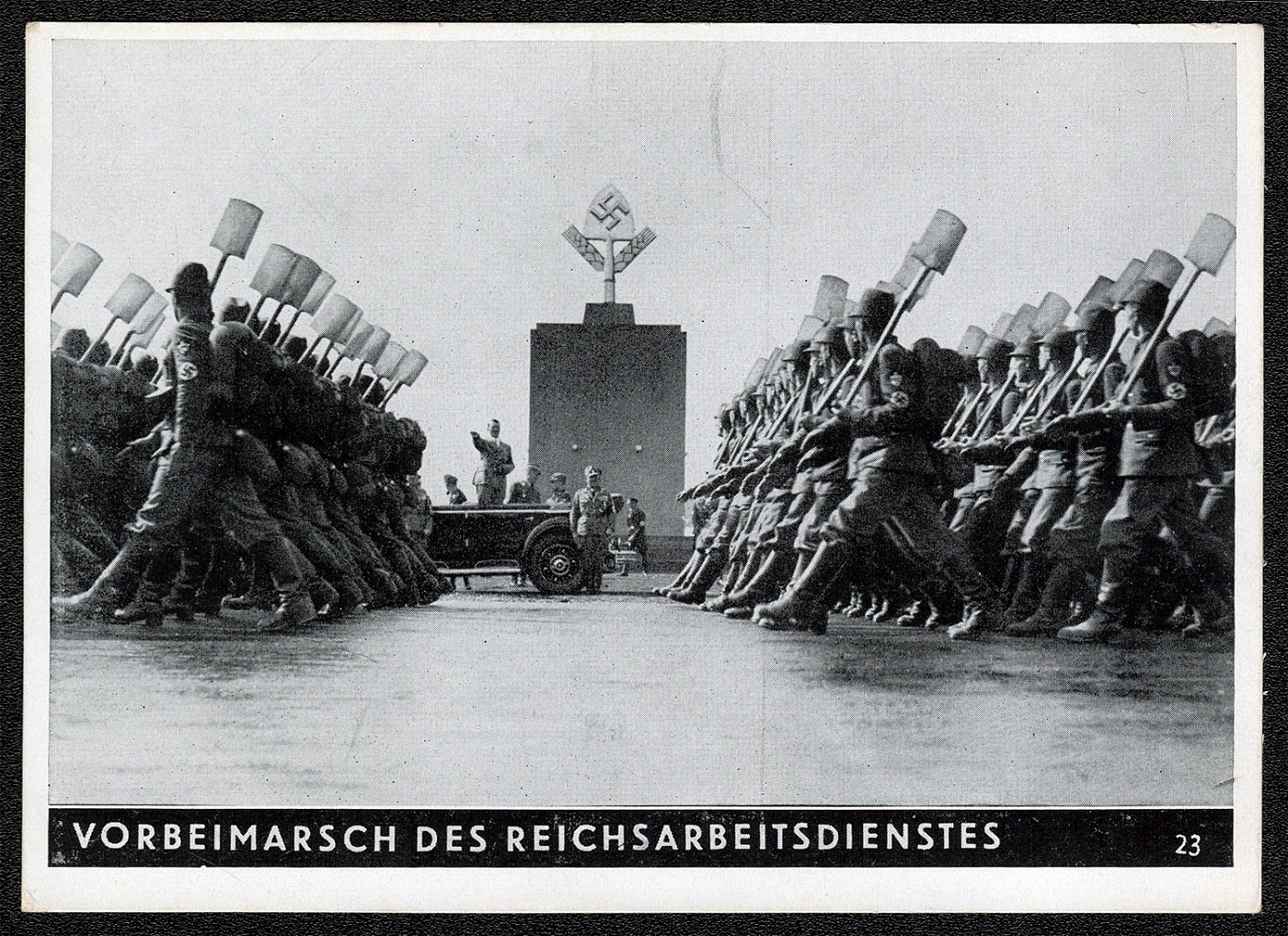
1938 Reich party rally of the NSDAP in Nuremberg, The Reichsarbeitsdienst March Past
1938 Reich party rally of the NSDAP in Nuremberg, The Reichsarbeitsdienst March Past
Unsold
374
$65
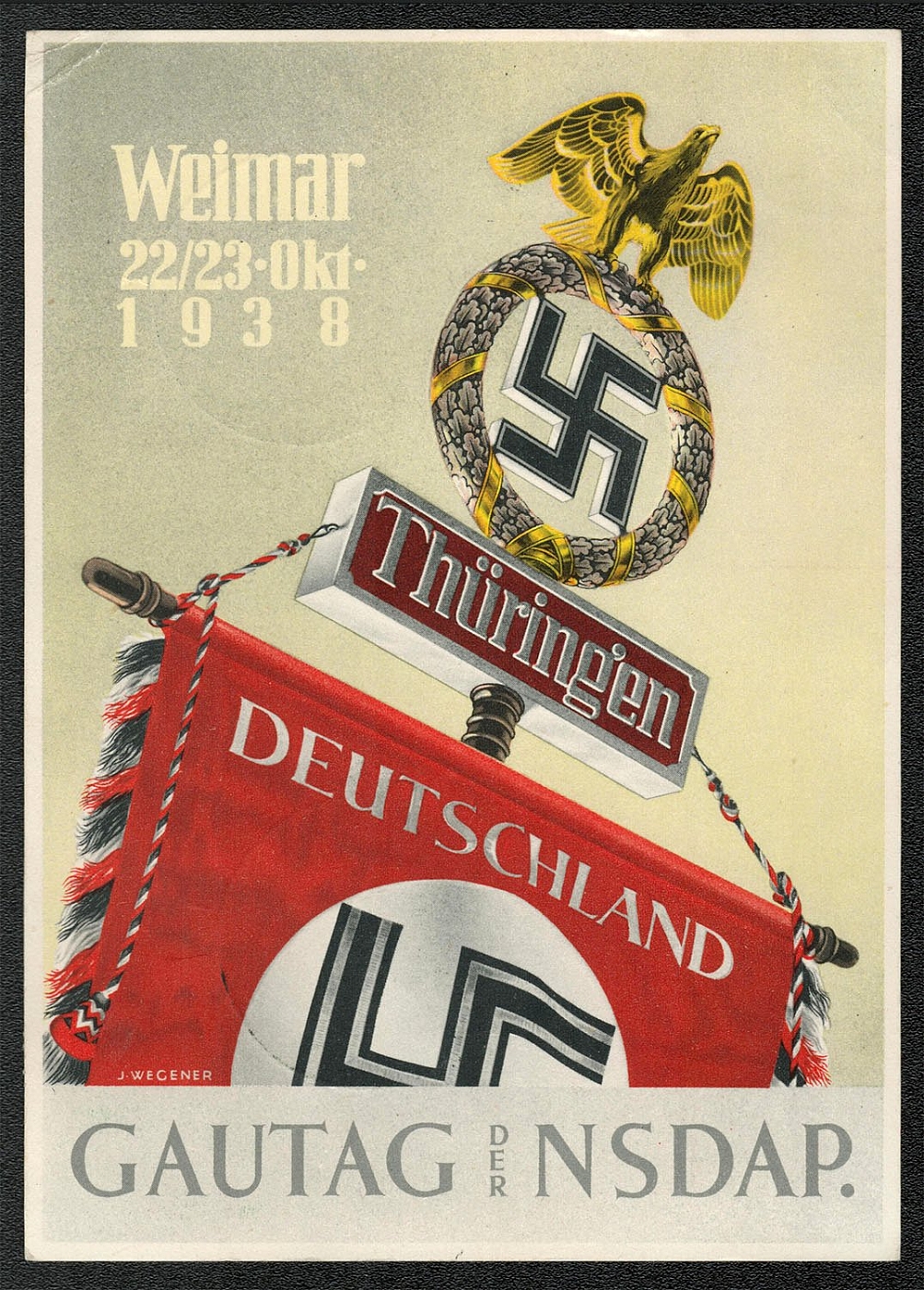
1938 Reich party rally of the NSDAP in Nuremberg, The standard of the SA Gruppe Thuringen
Designed by J. Wegener, this colorful Festpostkarte depicts the regimental standard of the SA Gruppe Thuringen. It was issued in commemoration of the Thuringen Gautag (Administrative District Day) held in Weimar 22/23 October 1938. Wegener originally designed the card in 1936 for the ten year commemoration of the July 1926 party rally held in Weimar, then the capital of the state of Thuringen. (Thuringen was included in Saxony in 1934.) Official Festival post card issued by the NSDAP Thuringen District Administration. The obverse of the card commemorates the Gautag held in Weimar on 22-23 October 1938. However, the sonderstempel canceling Sc B120, commemorates the Gautag held 4-6 November. Furthermore, it does not contain a specific date although the card was properly addressed and postally used.
Sold for:
$65
375
-
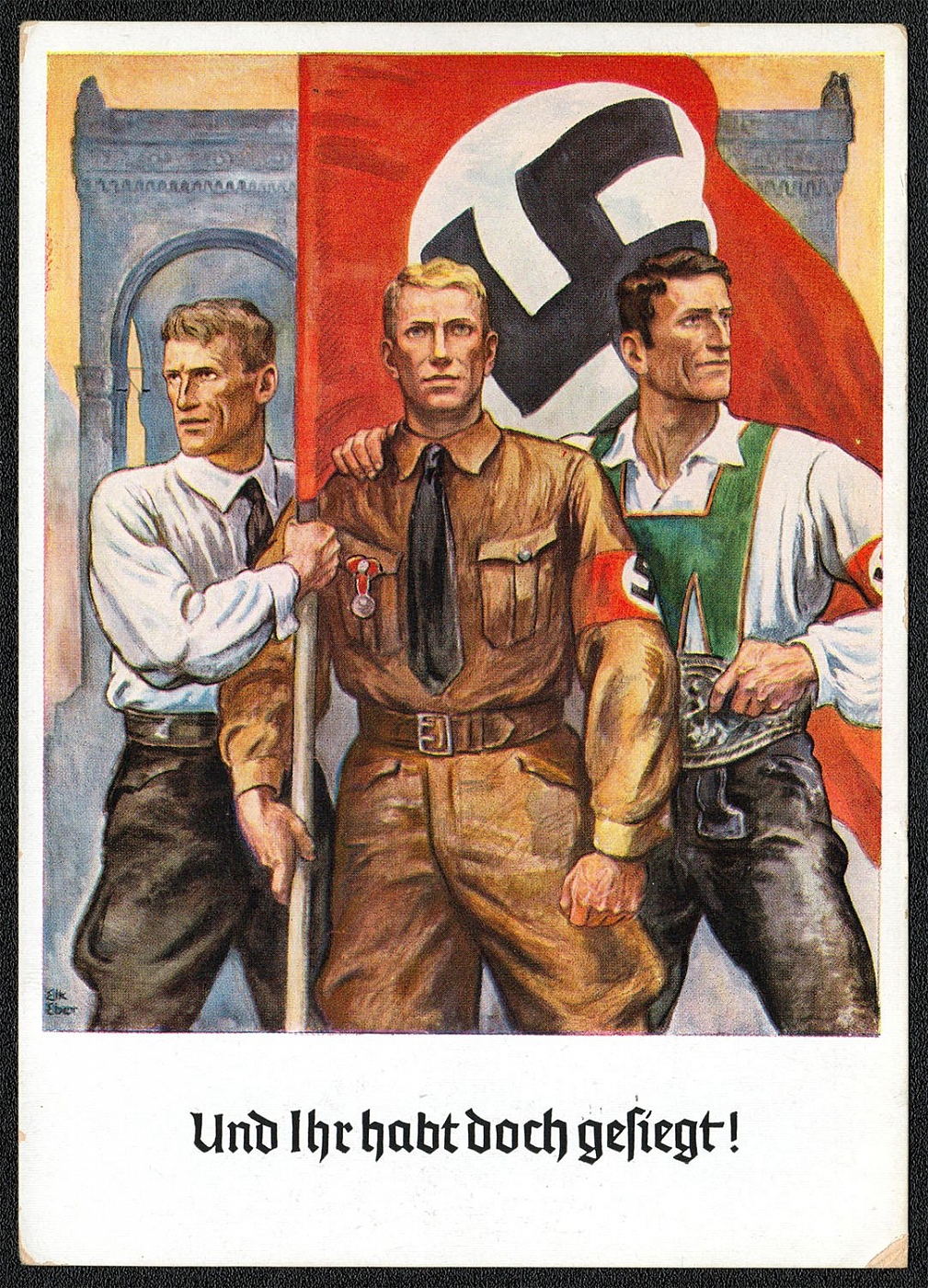
1938 Reich party rally of the NSDAP in Nuremberg, And you have conquered after all!
This official commemorative card published by the Munich NSDAP depicts a Sudetenlander, a German SA trooper, and an Austrian civilian holding a swastika flag in front of the Feldherrnhalle in Munich (the scene of the failed putsch). There was no special commemorative stamp for the fifteenth anniversary of the Munich Beer Hall Putsch, but there was a special postmark. It appears on the card on the facing page.
Unsold
376
$10
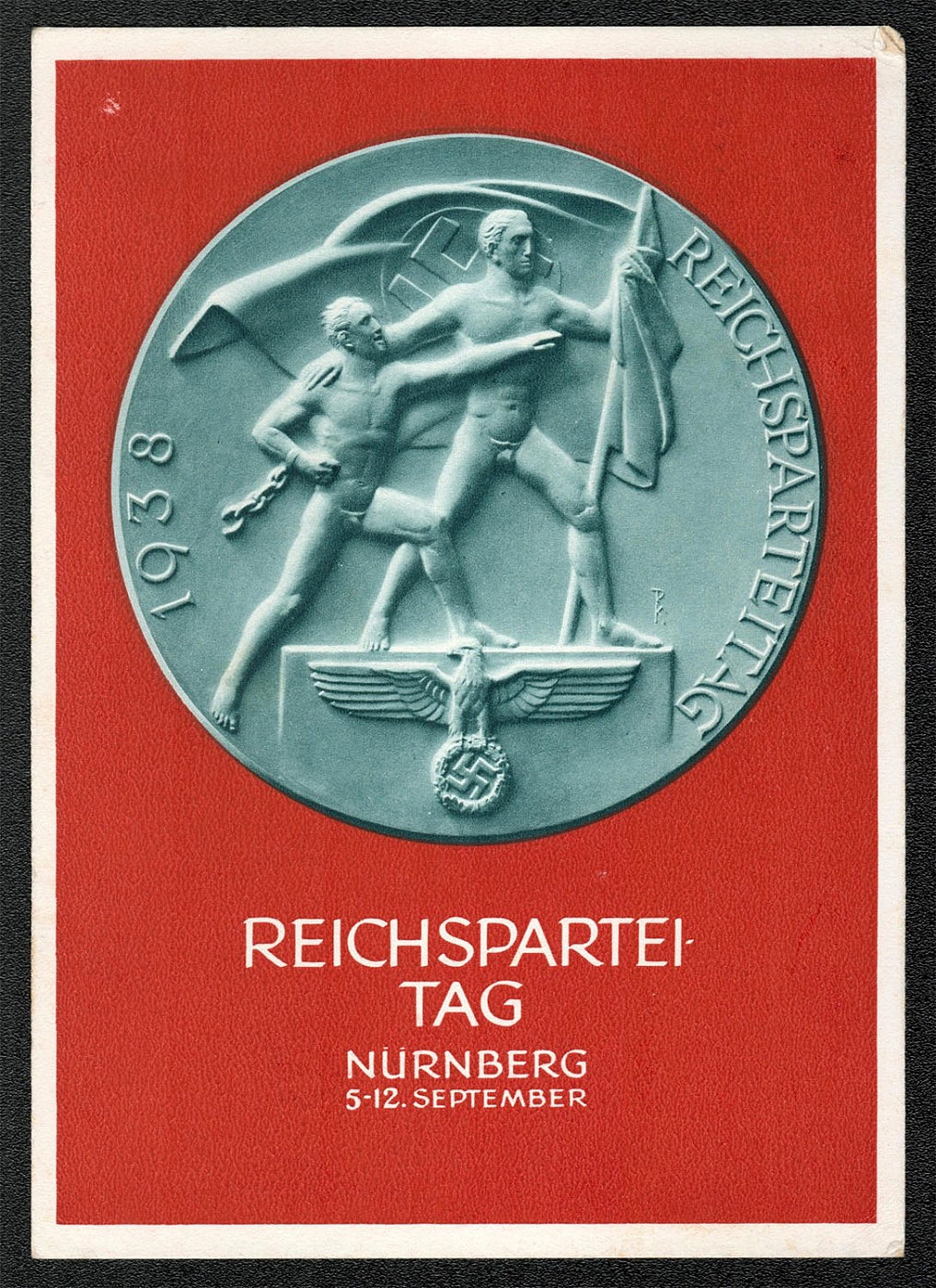
1938 Reich party rally of the NSDAP in Nuremberg
This official NSDAP rally card was franked with Sc 120 and postally used on 5 September 1938. It received the Bossek-designed commemorative handstamp cancellation, Type Illb, in which the tail of the eagle points between the “a” and “g” of “tag,” and the inner feather on the left is wider than that of Type Illa. It is not known in which Postamt Nurnberg this cancel was used. Note that the stamp retains the tab complete with control numbers.
Sold for:
$10
377
$10
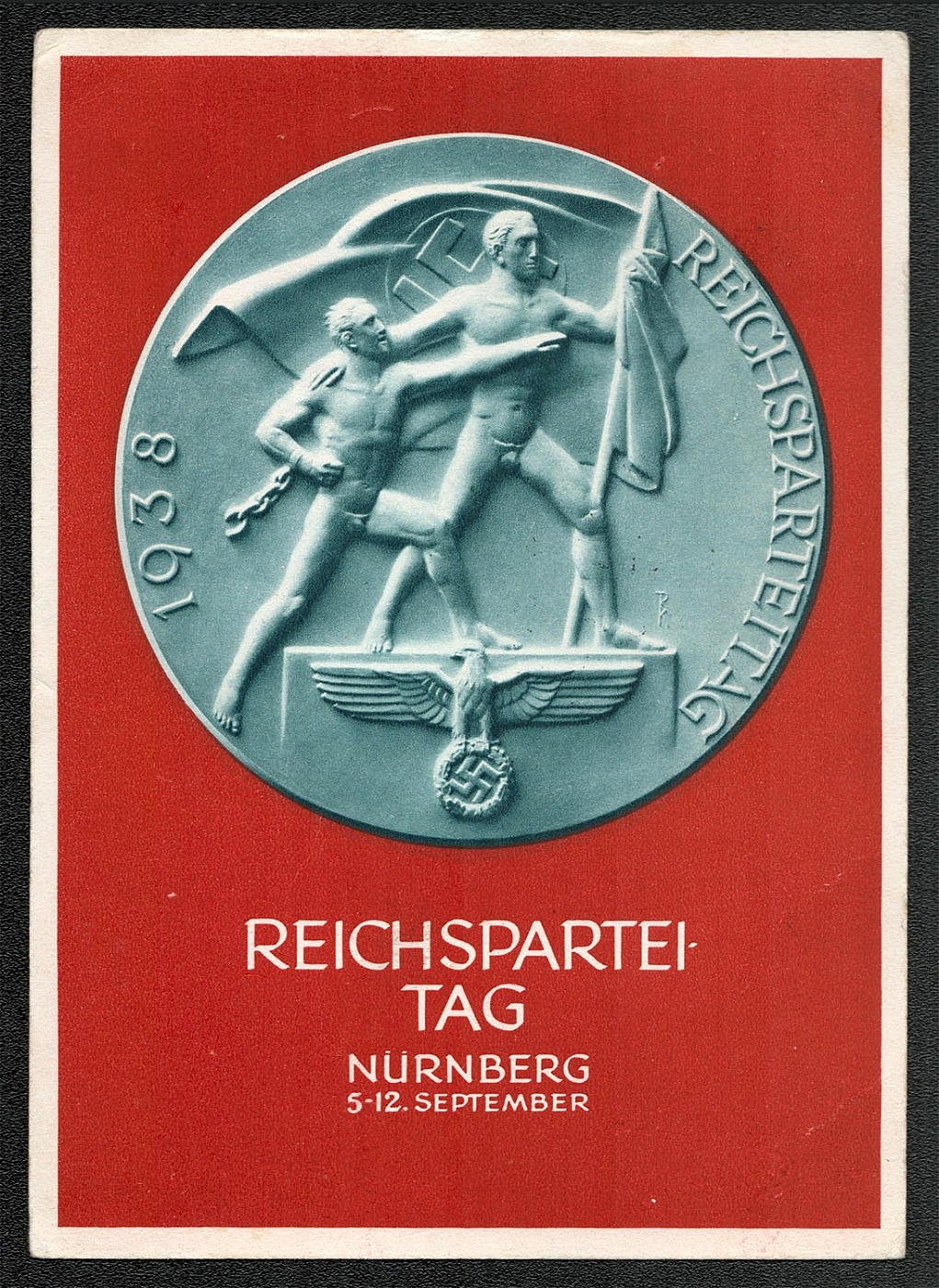
1938 Reich party rally of the NSDAP in Nuremberg. Plaque by Professor Richard Klein’s
One of two official NSDAP Party Rally cards for 1938. Professor Richard Klein’s Sonderplakette Reichsparteitag depicts a flag-holding Germany welcoming an Austria freed fr om its chains, and raising it to join the Fatherland under the Hakenkreuzfahne of the New Order. Hoffmann Rally Card No. 38/3 postally used 5 September 1938. The card was mailed from Nurnberg Postamt 2. The Parteitaghandstempel cancellation is Type I wh ere the tail of the eagle is between the “t” and “a” of “tag.”
Sold for:
$10
378
-
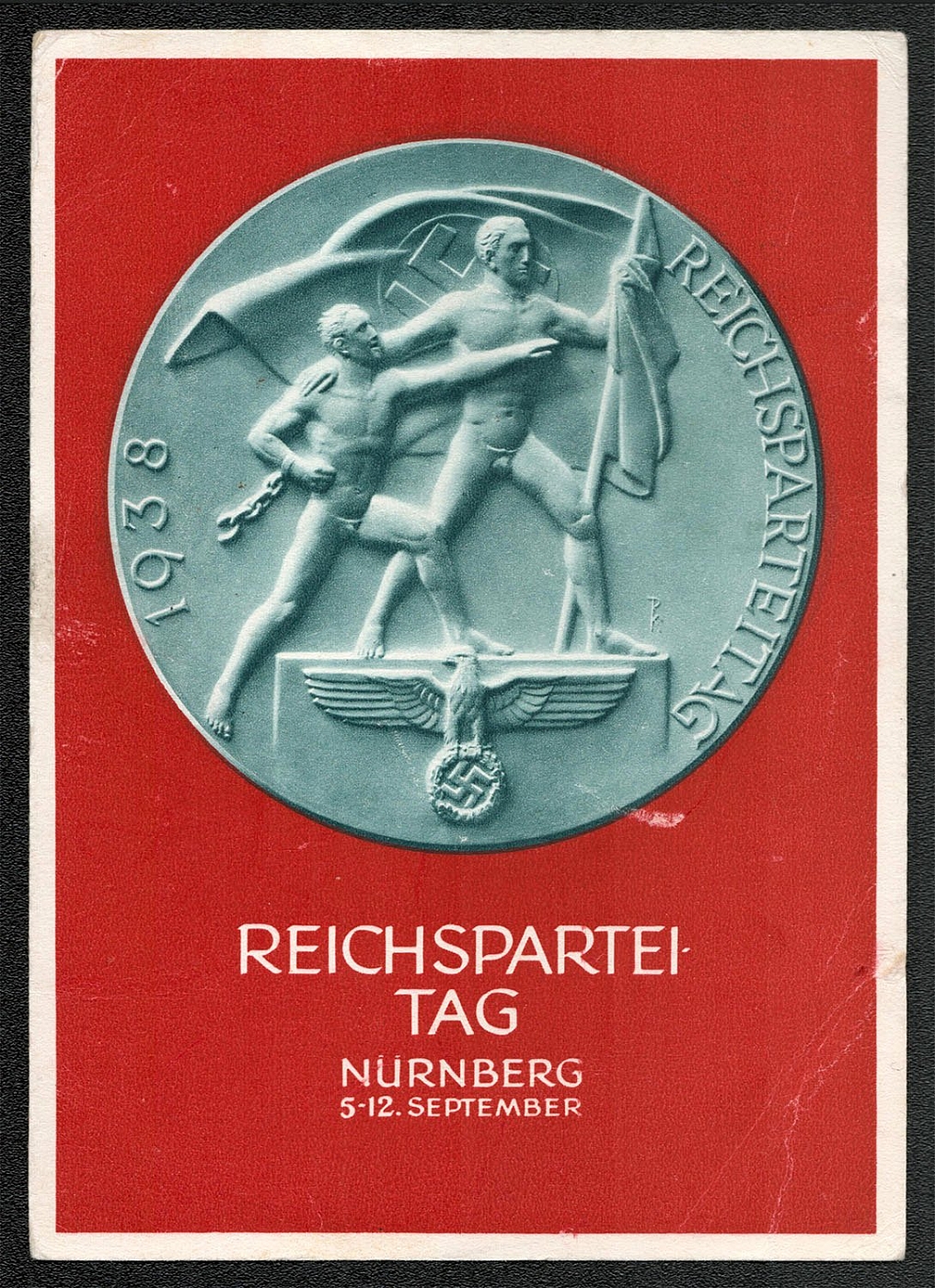
1938 Reich party rally of the NSDAP in Nuremberg. Plaque by Professor Richard Klein’s (2)
This official NSDAP rally card was franked with Sc 120 and postally used on 8 September 1938. It received the Bossek-designed commemorative handstamp cancellation, Type Ha, in which the tail of the eagle is over the “a” of “tog,” and the identifying letter “a” has an asymmetrical loop. It is not known in which specific Postamt Nurnberg this cancel was used.
Unsold
379
-
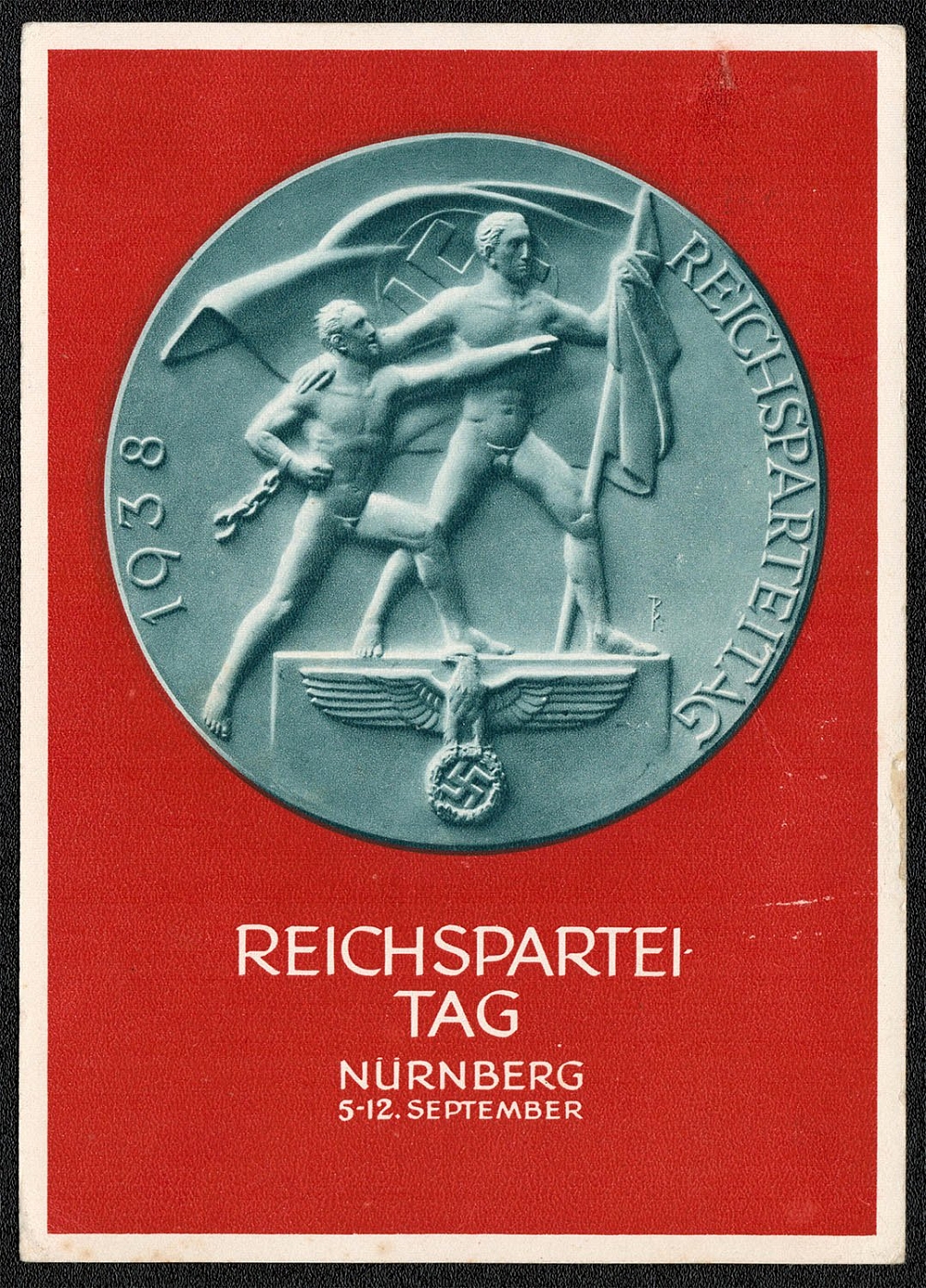
1938 Reich party rally of the NSDAP in Nuremberg. Plaque by Professor Richard Klein’s (3)
This official NSDAP rally card (See card dated 5 September 1938 for illustrated side) was franked with Sc 419 and postally used on 12 September 1938. It received the new Werbestempel (publicity slogan cancellation) depicting three swastika flags over a stylized view of the rooftops of Nurnberg. The cancellation is Type IV, in which the flagpole tops are drawn with one line and the “P” in “Parteitag” is narrow. The date stamp attached to the slogan bears no post office number. It was, however, almost certainly used in Postamt Nurnberg 2.
Unsold
380
$95
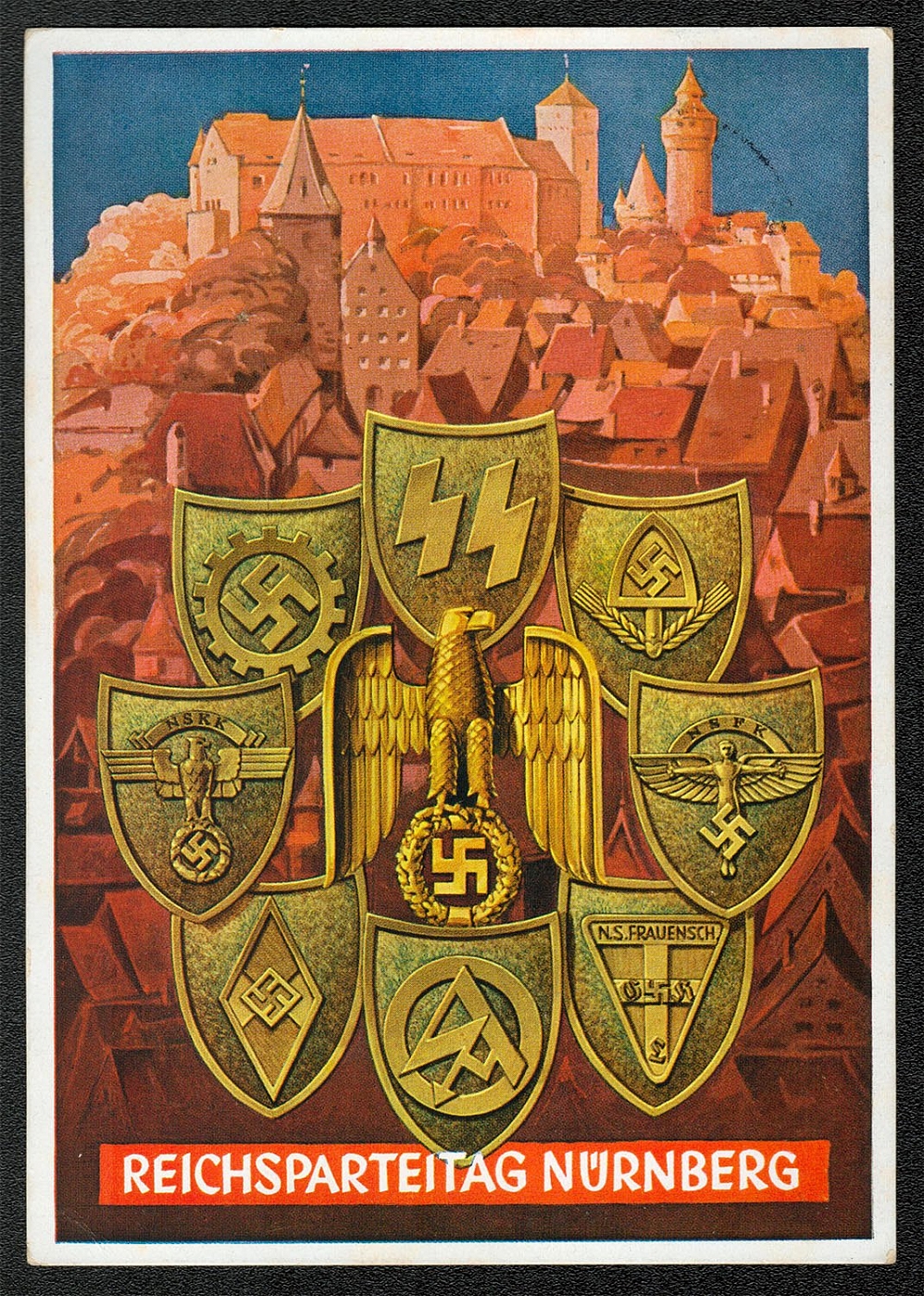
1938 Reich party rally of the NSDAP in Nuremberg. NS armorial shields surrounding an eagle
(Artist unknown.) Hoffmann Rally Card No. 38/3 postally used 5 September 1938. The card was mailed fr om Nurnberg Postamt 2. The Parteitaghandstempel cancellation is Type I wh ere the tail of the eagle is between the “t” and “a” of “tag.”
Sold for:
$95
381
$120

1938 Reich party rally of the NSDAP in Nuremberg. NS armorial shields surrounding an eagle RARE card
Artist: Hans Friedmann. Hoffmann Rally Card No. 36/3 franked with Sc В120 and mailed from Nurnberg, 7 September 1938. Postal station “b” unknown.
Sold for:
$120
382
$120

1938 Reich party rally of the NSDAP in Nuremberg. Austrian NS Member and Flag with SA Man and Standards RARE card
Heinrich Hoffman Parteitagspostkarte No. 38/9. (Artist: Hans Friedmann. printer unknown.) Scott В120 with Gefalligkeitsstempelungen (favor cancel) dated 11 September 1938. The sonderhandstempel (commemorative handstamp) is Type I (b) in which the left-hand side of the eagle’s body is drawn with a curved line, and the letter “a” has a large loop. Postally used mail with this cancellation was forwarded through Postamt Nurnberg 2.
Sold for:
$120
383
$300

1938 Reich party rally of the NSDAP in Nuremberg. Barechested Labor Corps man with flag on the Zeppelin Field RARE card
Barechested Labor Corps man with flag on the Zeppelin Field Artist’s card (38/14) designed by Han Friedmann
Sold for:
$300
384
$80
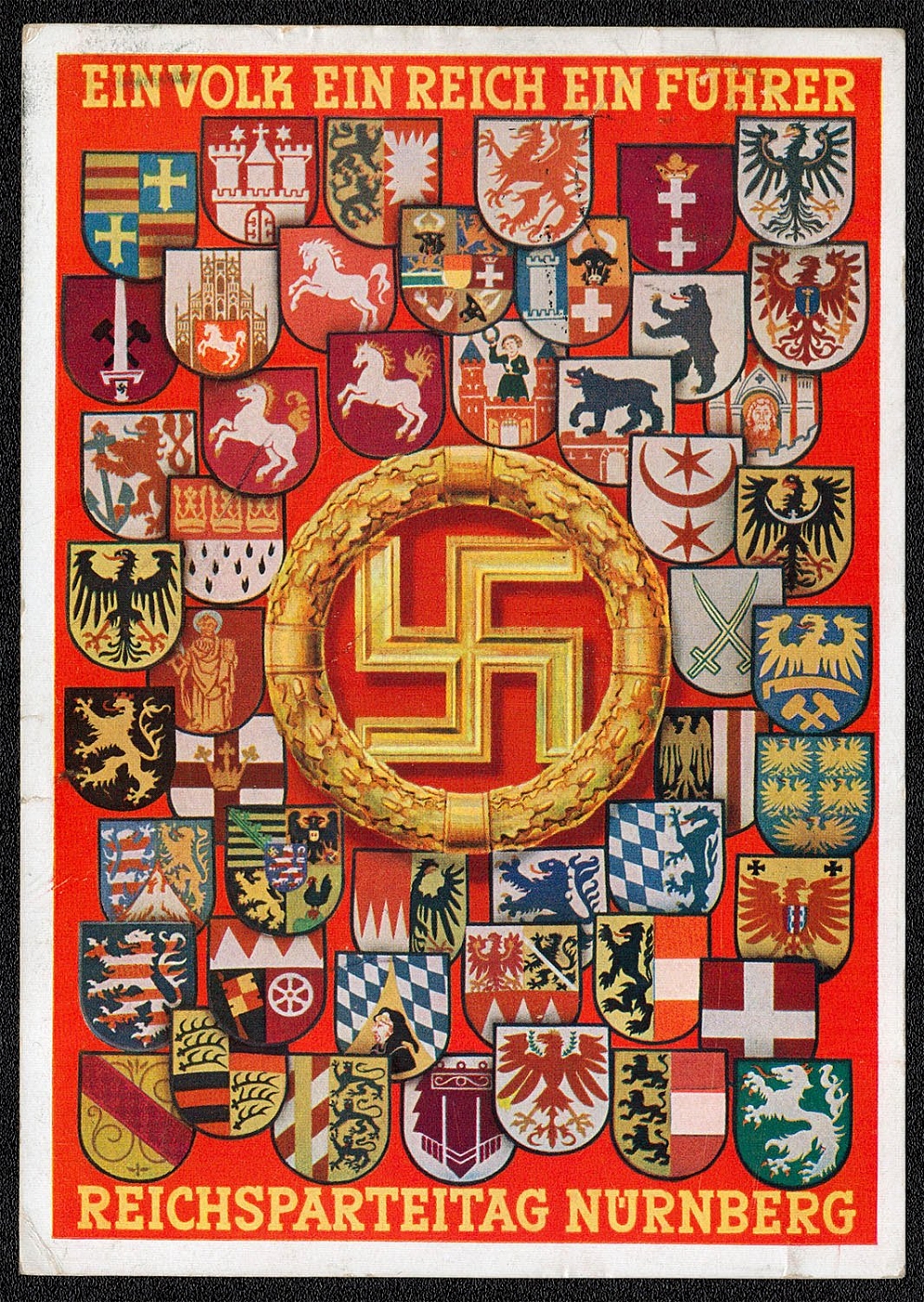
1938 Reich party rally of the NSDAP in Nuremberg. Coats of Arms Surrounding a Swastika
Heinrich Hoffmann Parteitagspostkarte No. 38/5. Printed by K. Ulrich & Company, Nurnberg-O (Artist unknown.) Herr Katzsch mailed this card from Nurnberg 2 on 14 September 1938 to Frau Elena Katzsch in Leipzig. It was posted two days after the closing of the Party Congress.
Sold for:
$80
385
$25
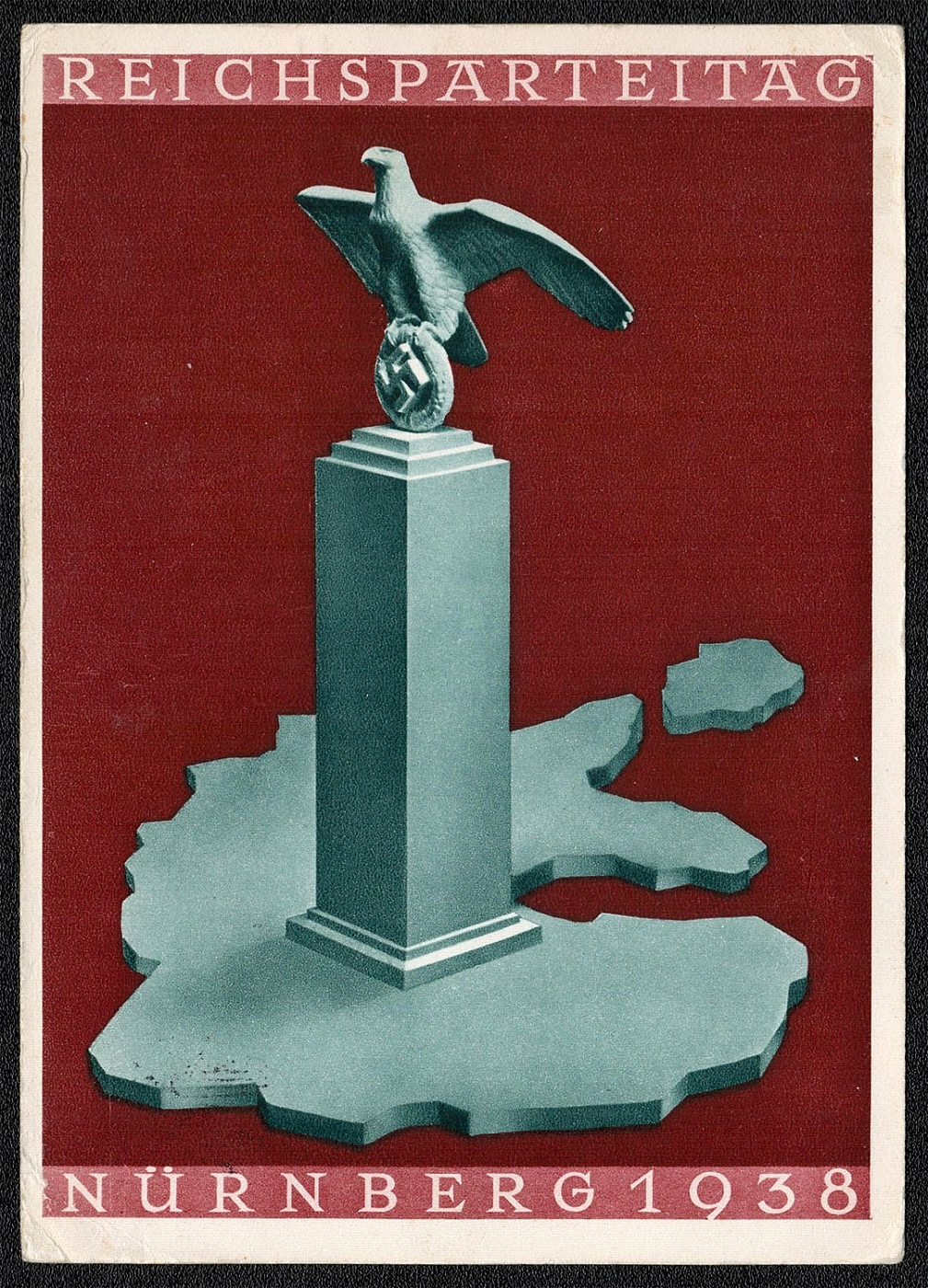
1938 Reich party rally of the NSDAP in Nuremberg. Eagle on Pedestal
One of two official NSDAP Party Rally cards for 1938. designer unknown. This official NSDAP rally card was franked with Sc 419 and postally used (albeit unconventionally) on 11 September 1938. It received the new Werbestempel (publicity slogan cancellation) depicting three swastika flags over a stylized view of the rooftops of Nurnberg. The cancellation is Type IV, in which the left sides of the flagpole tops are missing and the “P” in “Parteitag” is narrow. The date stamp attached to the slogan bears no post office number. It was, however, almost certainly used in Postamt Nurnberg 2.
Sold for:
$25
386
$50
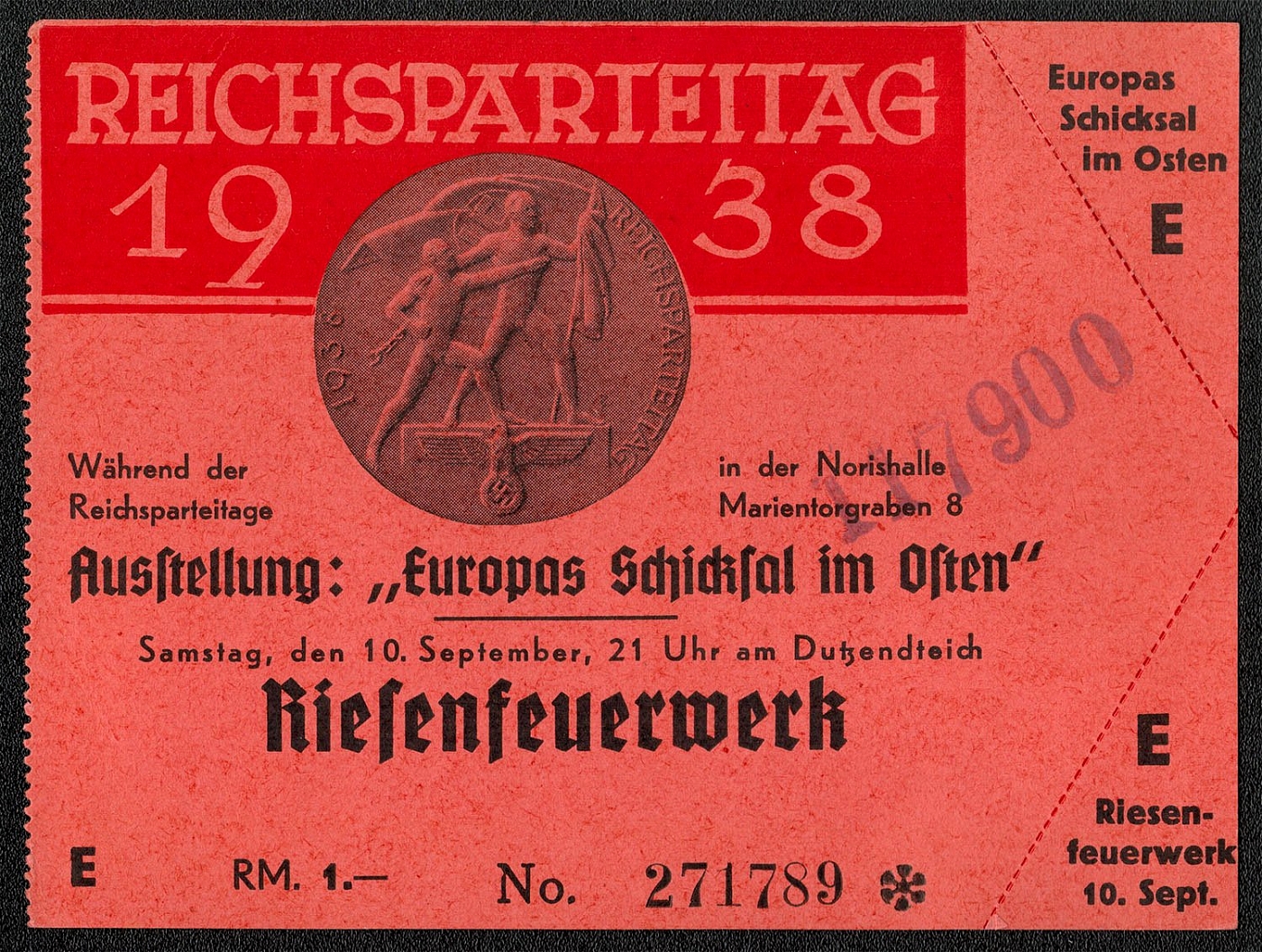
1938 Reich party rally of the NSDAP in Nuremberg. Ticket
This ticket was issued for the fireworks exhibition on the last night of the last Nurnberg Party Rally
Sold for:
$50
387
$70
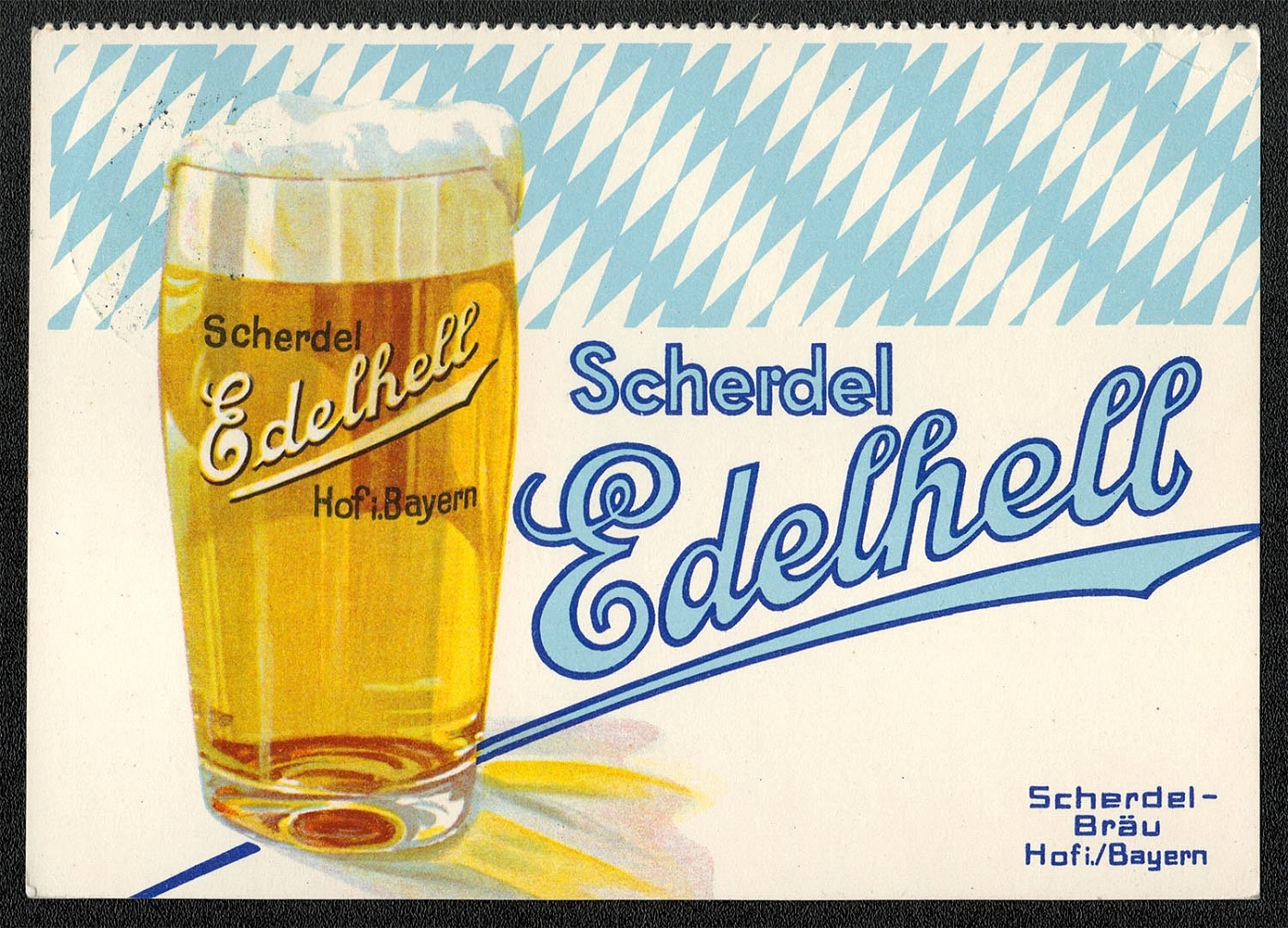
1938 Reich party rally of the NSDAP in Nuremberg. Bavarian beer
Bavarian beer advertising post card franked with Sc B120 posted in Nurnberg 2 on 12 September 1938. The upper left slogan translates: “Scherdel-Brau” Guaranteed for Quality!
Sold for:
$70
388
$35
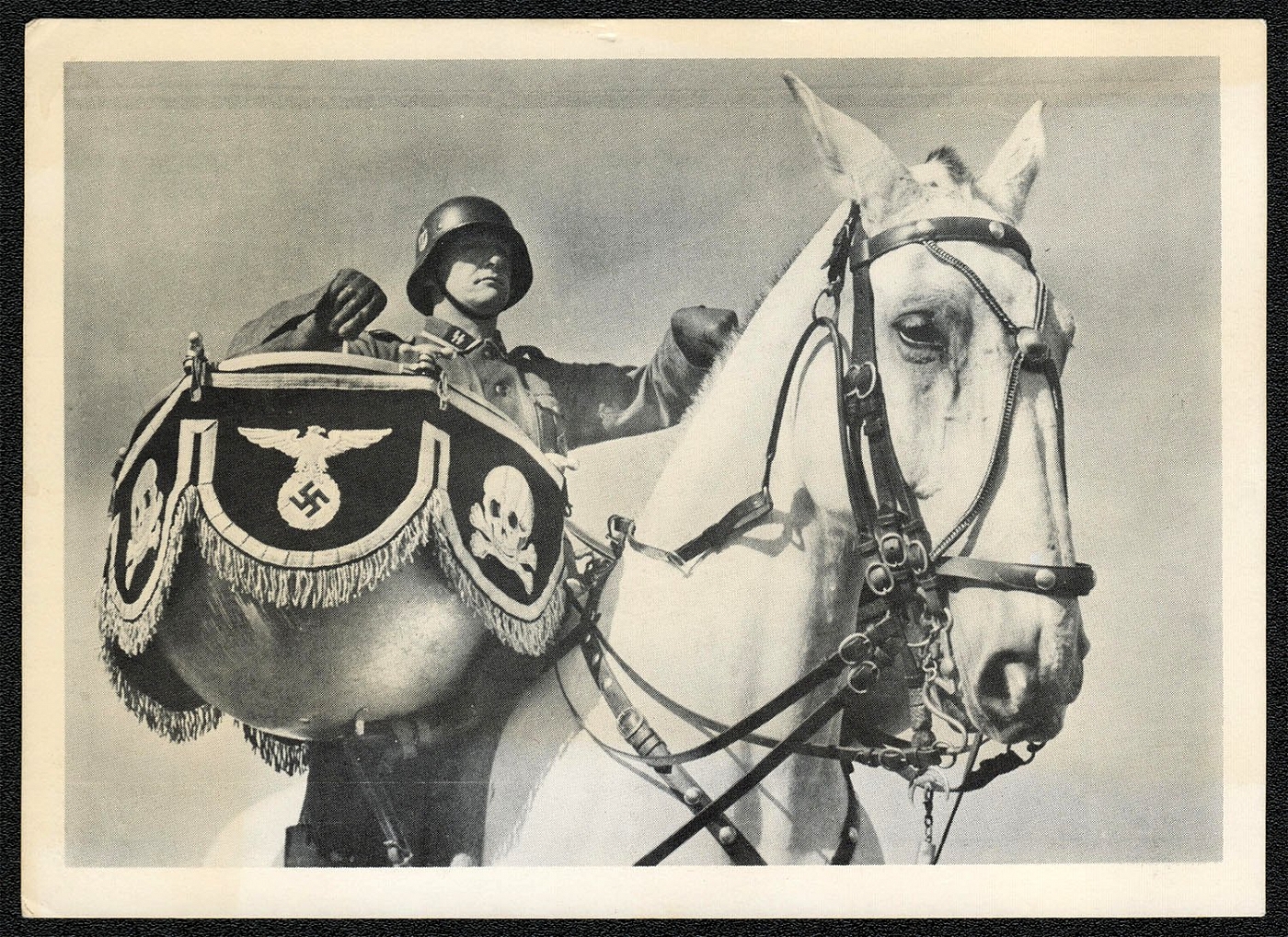
1939 Reich party rally of the NSDAP in Nuremberg. Trumpeter Corps of the SS Calvary Division
One of a series of post cards published from 1939 to 1942 commemorating the Waffen SS The reverse of this unmailed card reads: Foto: SS - Kreigsbericheter Buschel Herausgegeben im Einvernehmen mit dem SS - Fuhrungshauptamt. Herstellung und Alleinvertrieb: Kunstverlag E. A. Schwerdtfeger & Co., AG., Berlin Photo: SS - War Correspondent Biischel Published with consent of the SS Management Headquarters. Production and Sole Distributing Rights: Art Publisher E. A. Schwerdtfeger & Co., AG., Berlin
Sold for:
$35
389
-
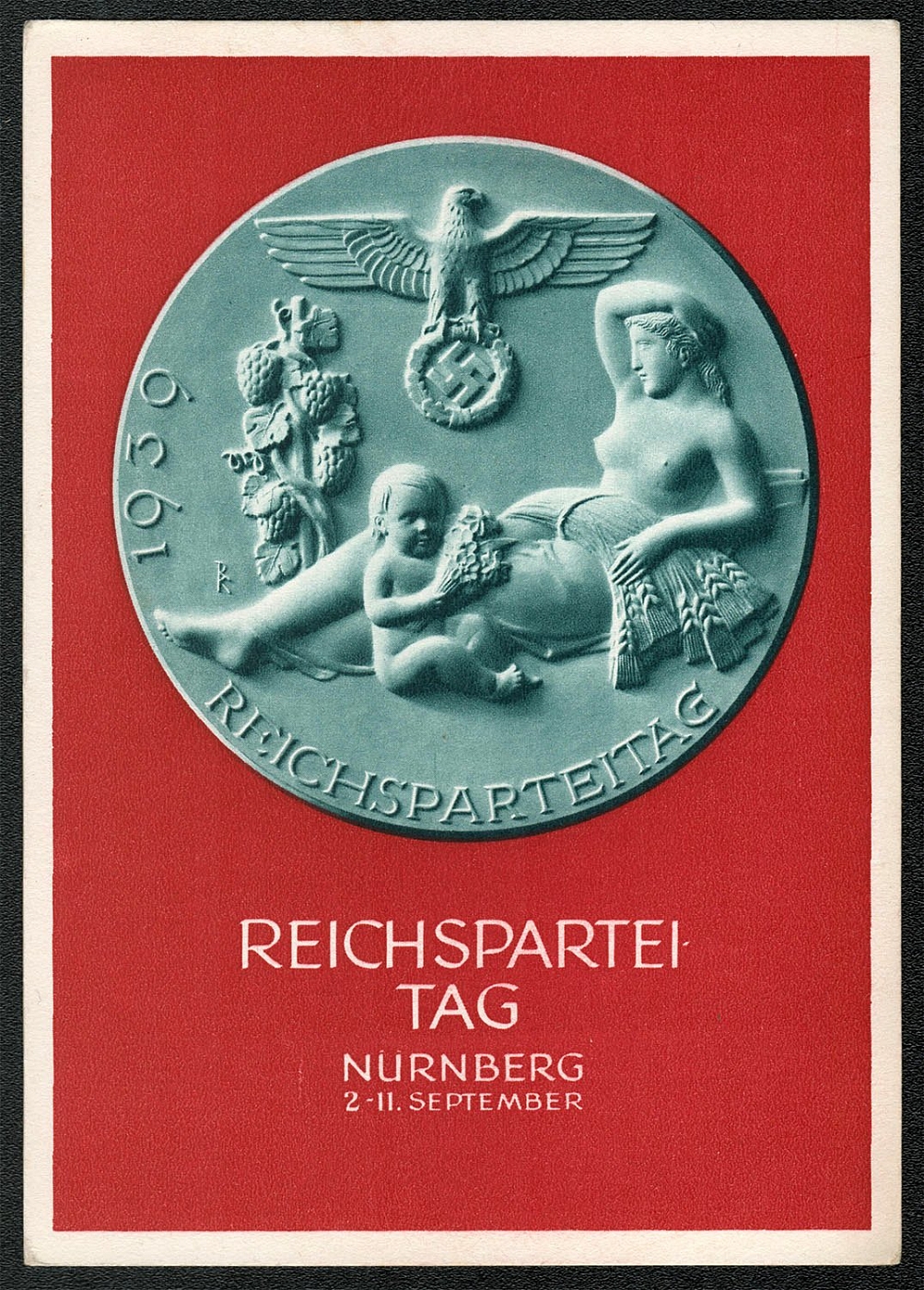
1939 Reich party rally of the NSDAP in Nuremberg. Professor Richard Klein’s special commemorative plaque
This card depicts Professor Richard Klein’s special commemorative plaque, in a format and color identical to the previous Eher cards produced and sold to mark the Rallies of 1935, 1936, 1937 and 1938, which also bore Klein’s commemorative designs. This year, however, it was an official post office issue (Michel P282) and was made available to the public on 25 August 1939.
Unsold
390
-
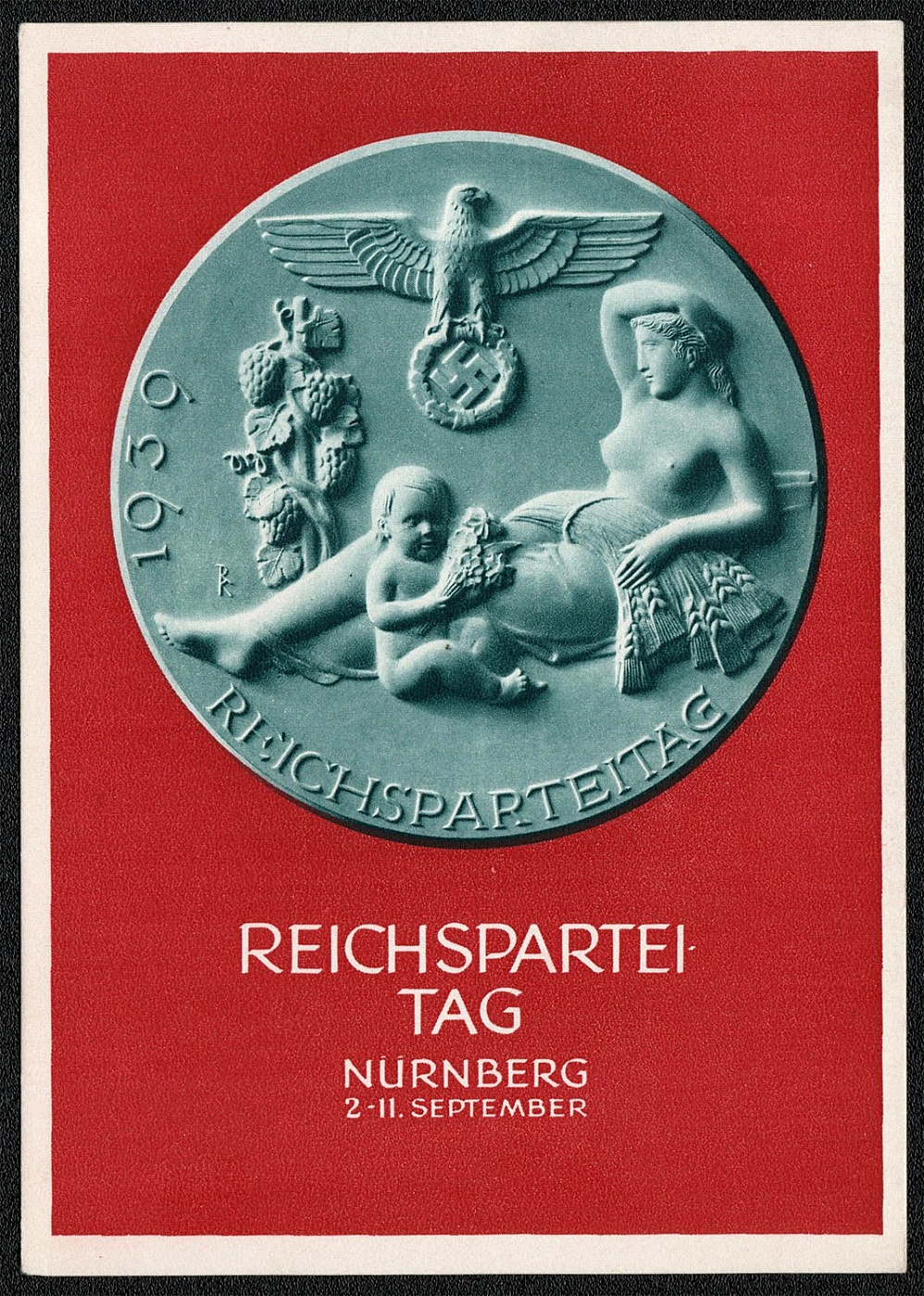
1939 Reich party rally of the NSDAP in Nuremberg. Professor Richard Klein’s special commemorative plaque (2)
This card depicts Professor Richard Klein’s special commemorative plaque, in a format and color identical to the previous Eher cards produced and sold to mark the Rallies of 1935, 1936, 1937 and 1938, which also bore Klein’s commemorative designs. This year, however, it was an official post office issue (Michel P282) and was made available to the public on 25 August 1939.
Unsold
391
-
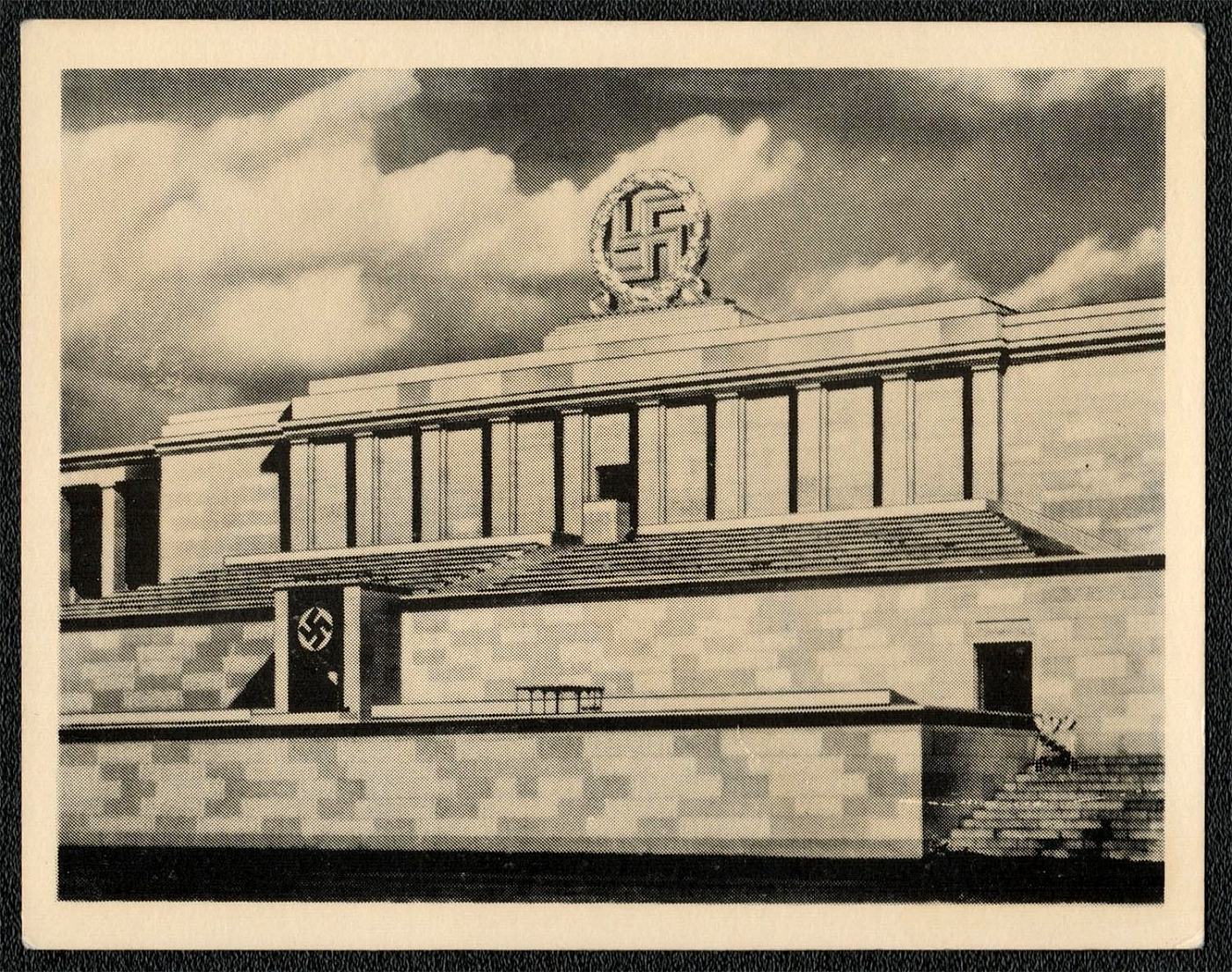
1939 Reich party rally of the NSDAP in Nuremberg. The Fuhrer's Podium on the Platform of Honor in the Zeppelinfeld
Nurnberg - The City of the National Party Rallies The National Party Rally Grounds The Fuhrer's Podium on the Platform of Honor in the Zeppelinfeld Original photo published circa 1938 by Stoja-Verlag Nurnberg (Nr. 61).
Unsold
392
$10
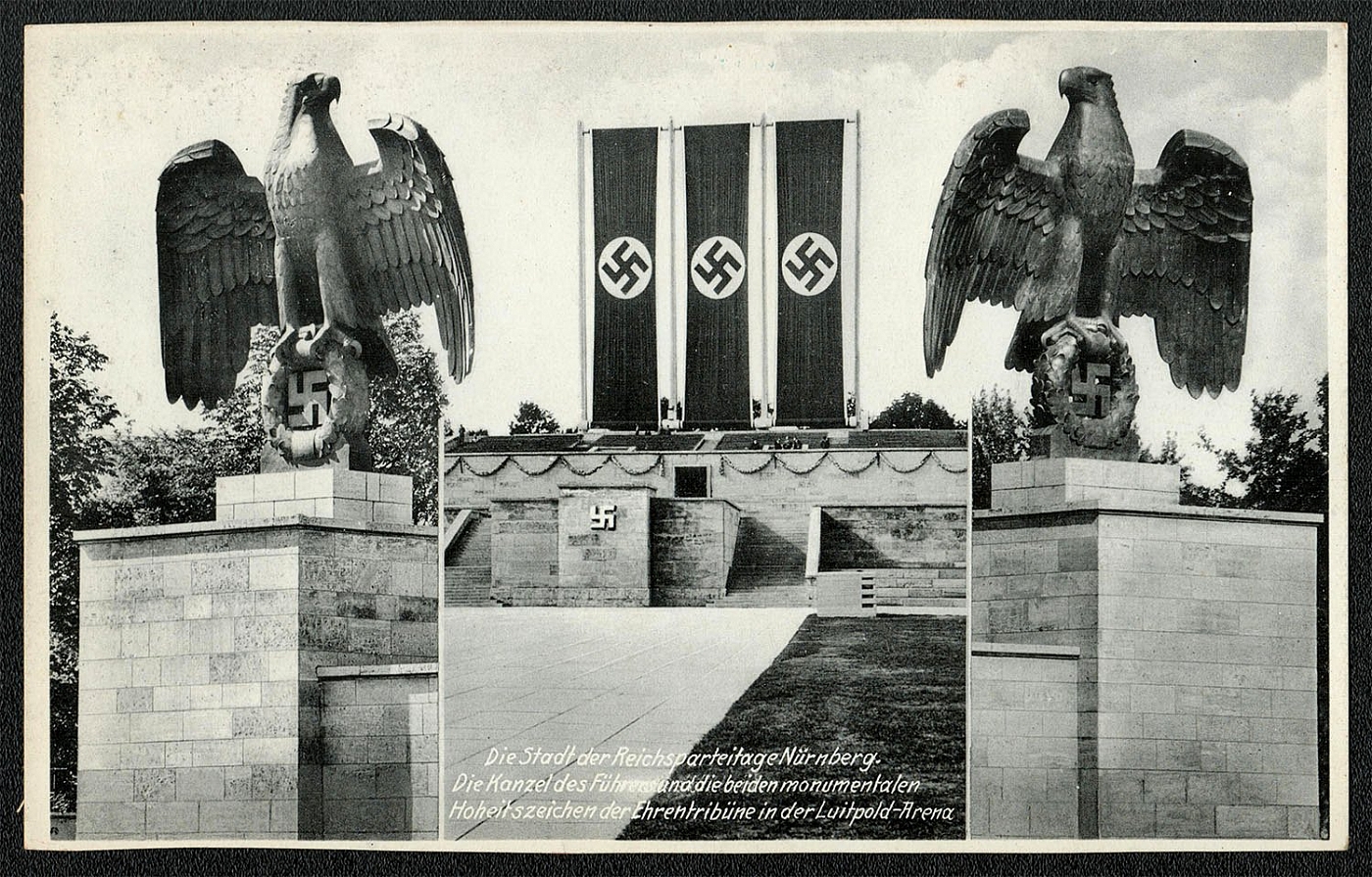
1939 Reich party rally of the NSDAP in Nuremberg. The Platform of Honor in the Luitpold Arena
Nurnberg, The City of the National Party Rallies. The Fuhrer’s pulpit and the staunch national emblem monuments on the Platform of Honor in the Luitpold Arena Published circa 1938 by Verlag Ludwig Riffelmacher, Furth i. Bayern, Falklandstrasse 107. (Nr. 40/288)
Sold for:
$10
393
-
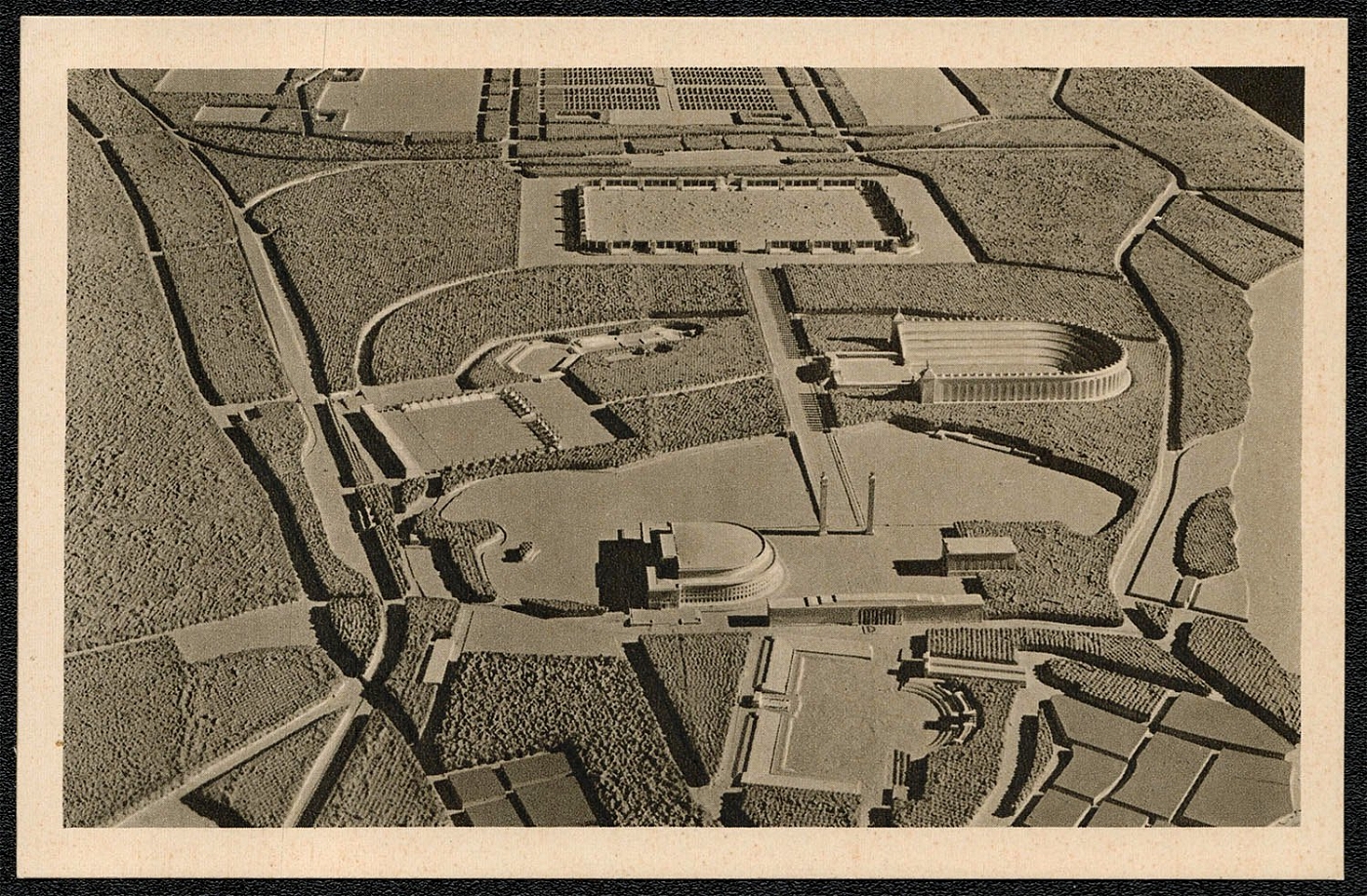
1939 Reich party rally of the NSDAP in Nuremberg. A Model of the Nuremberg Party Rally Grounds
Publisher: O. Struck, Berlin-Lichterfelde. Printer: Otto Elsner KG., Berlin Circa 1938
Unsold
394
-
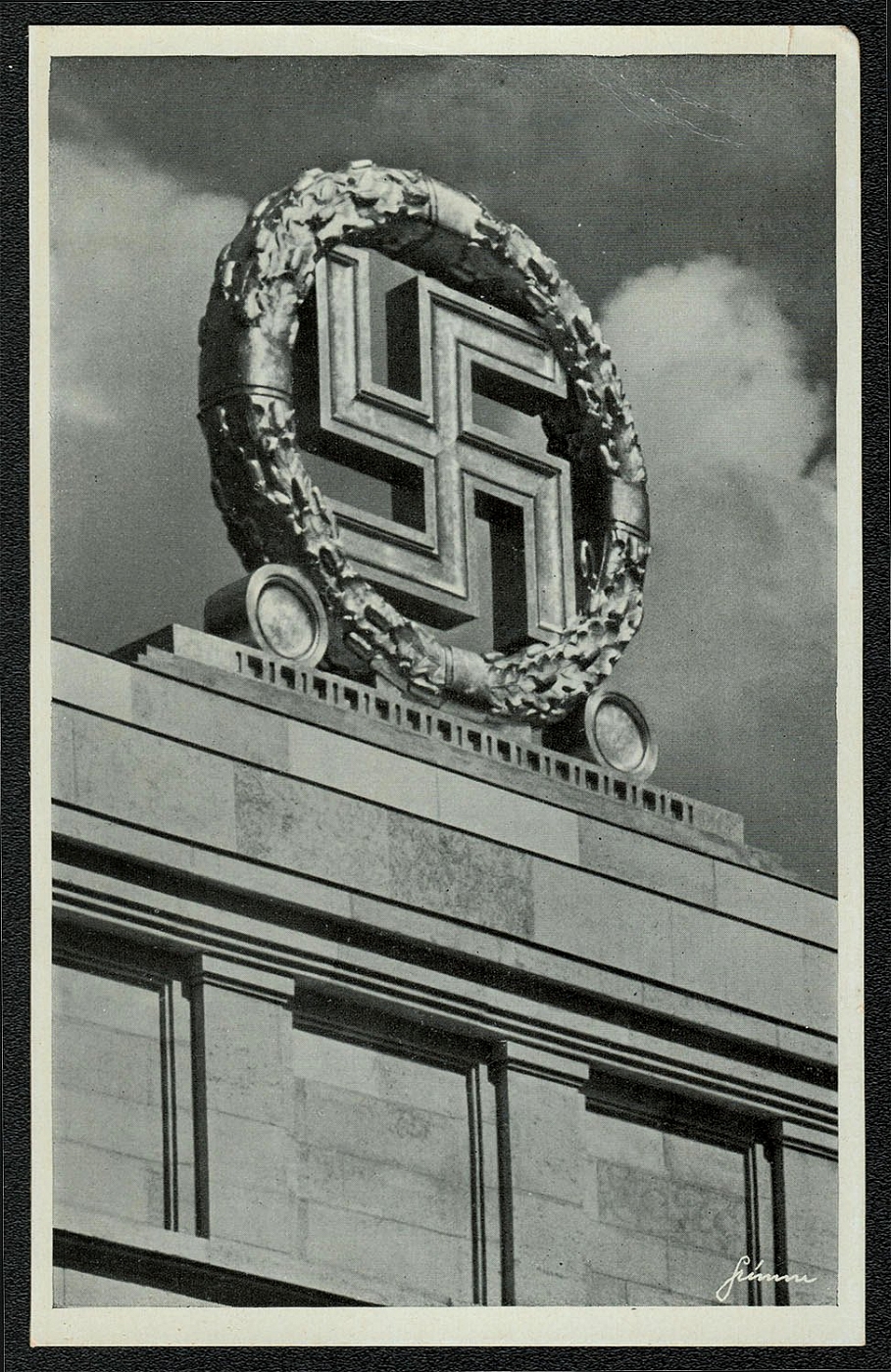
1939 Reich party rally of the NSDAP in Nuremberg. The national emblem over the main tribune of the Zeppelinfeld
The national emblem over the main tribune of the Zeppelinfeld. Architect: General Building Inspector Prof. Albert Speer. Published with the approval of the Reichsparteitag Association by Hertra + Verlag, Hermann Trautwein, Nurnberg-O
Unsold
395
-
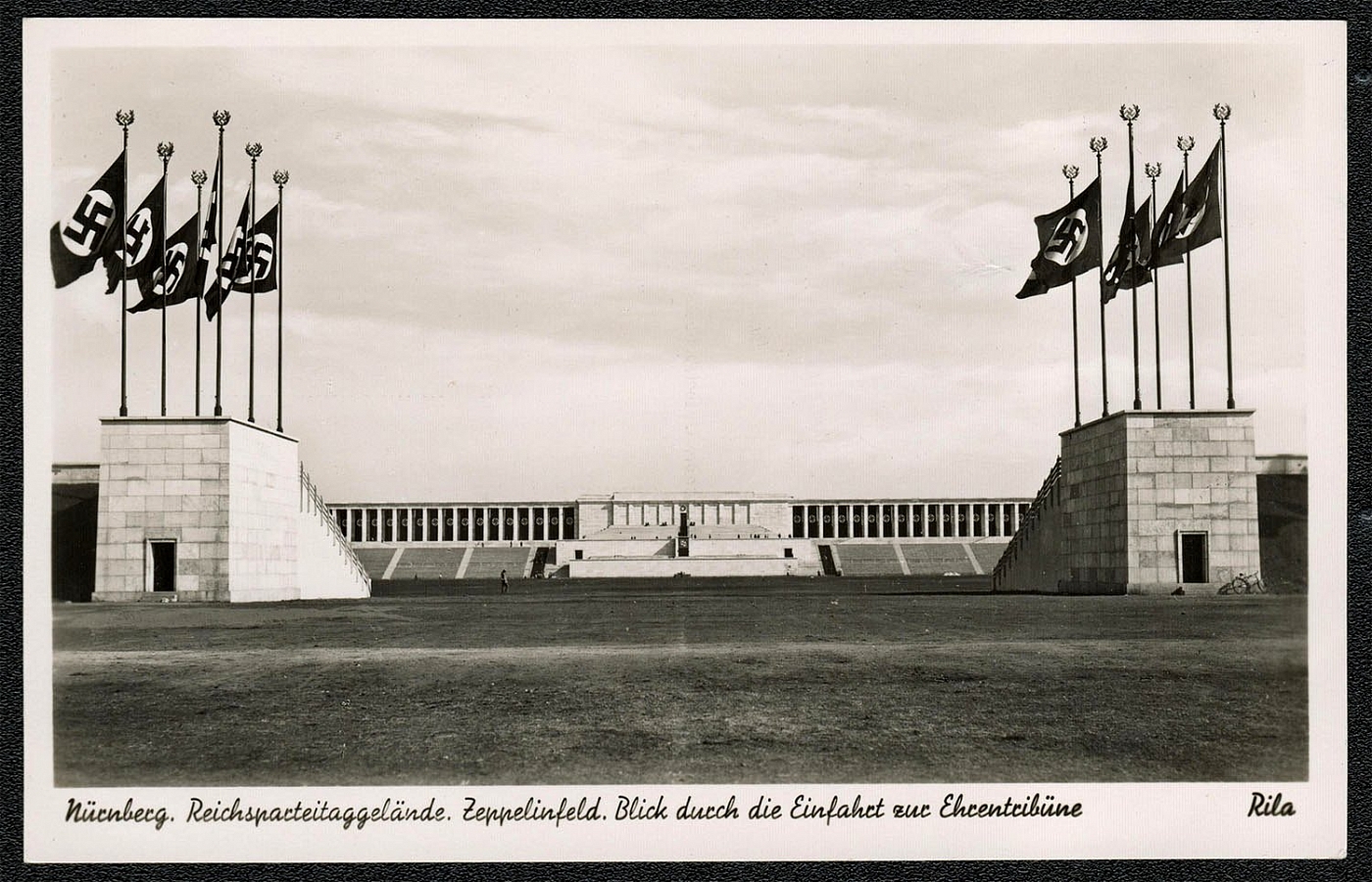
1939 Reich party rally of the NSDAP in Nuremberg. The view through the entrance to the Platform of Honor
Nurnberg. Reichsparteitag Grounds Zeppelinfeld. The view through the entrance to the Platform of Honor Published by Verlag Ludwig Riffelmacher, Unterfarrnbach iiber Furth i. Bay. Nr. 5643/40/288
Unsold
396
-
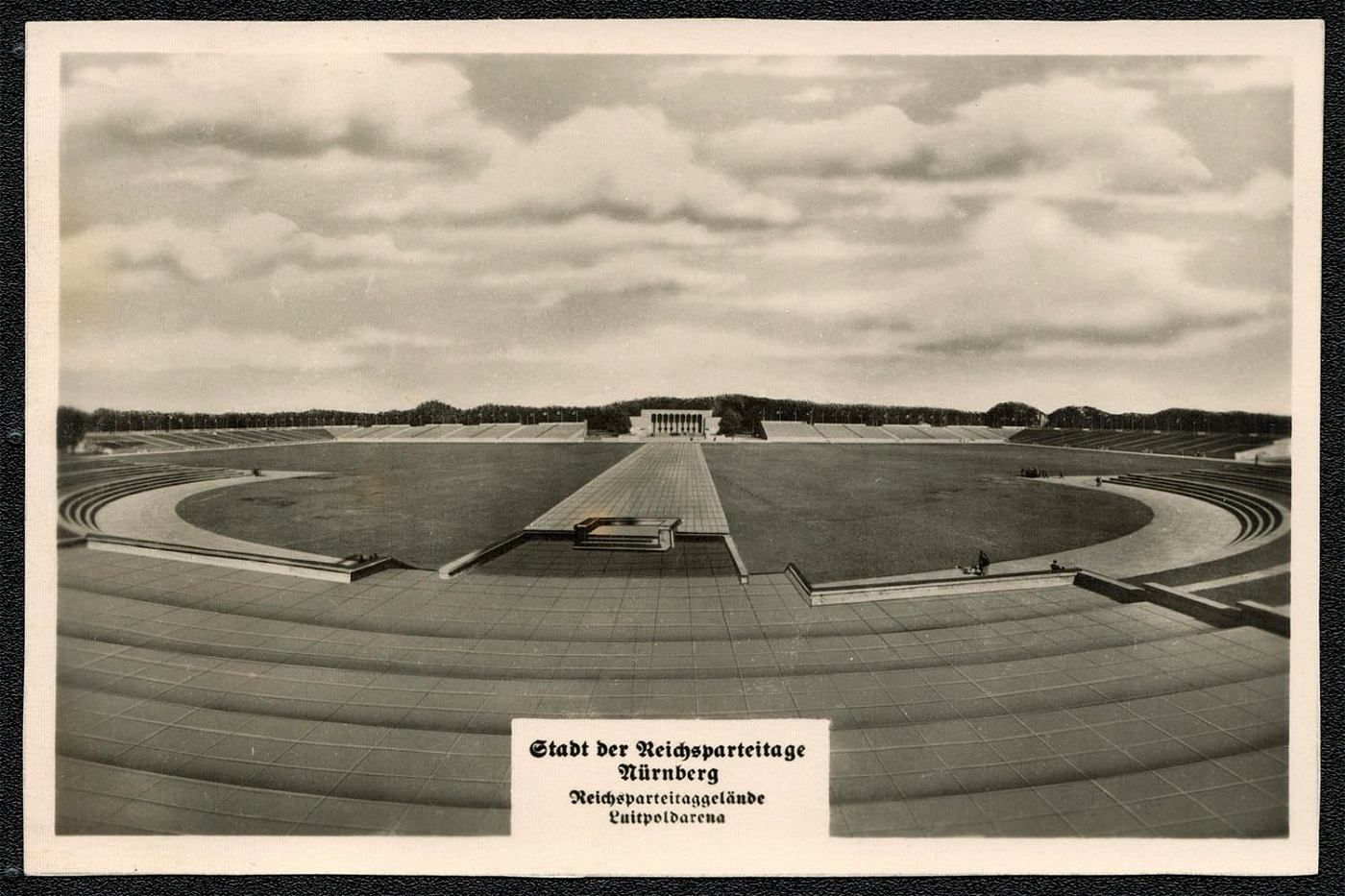
1939 Reich party rally of the NSDAP in Nuremberg. The National Party Rally Grounds - Luitpoldarena
Nurnberg - The City of the National Party Rallies The National Party Rally Grounds - Luitpoldarena. Published circa 1938 by Stoja-Verlag Janke & Dr. Maiwald, Nurnberg-A (Nr. 5140). (Photograph) taken with a Meyer-Optik (camera).
Unsold
397
-
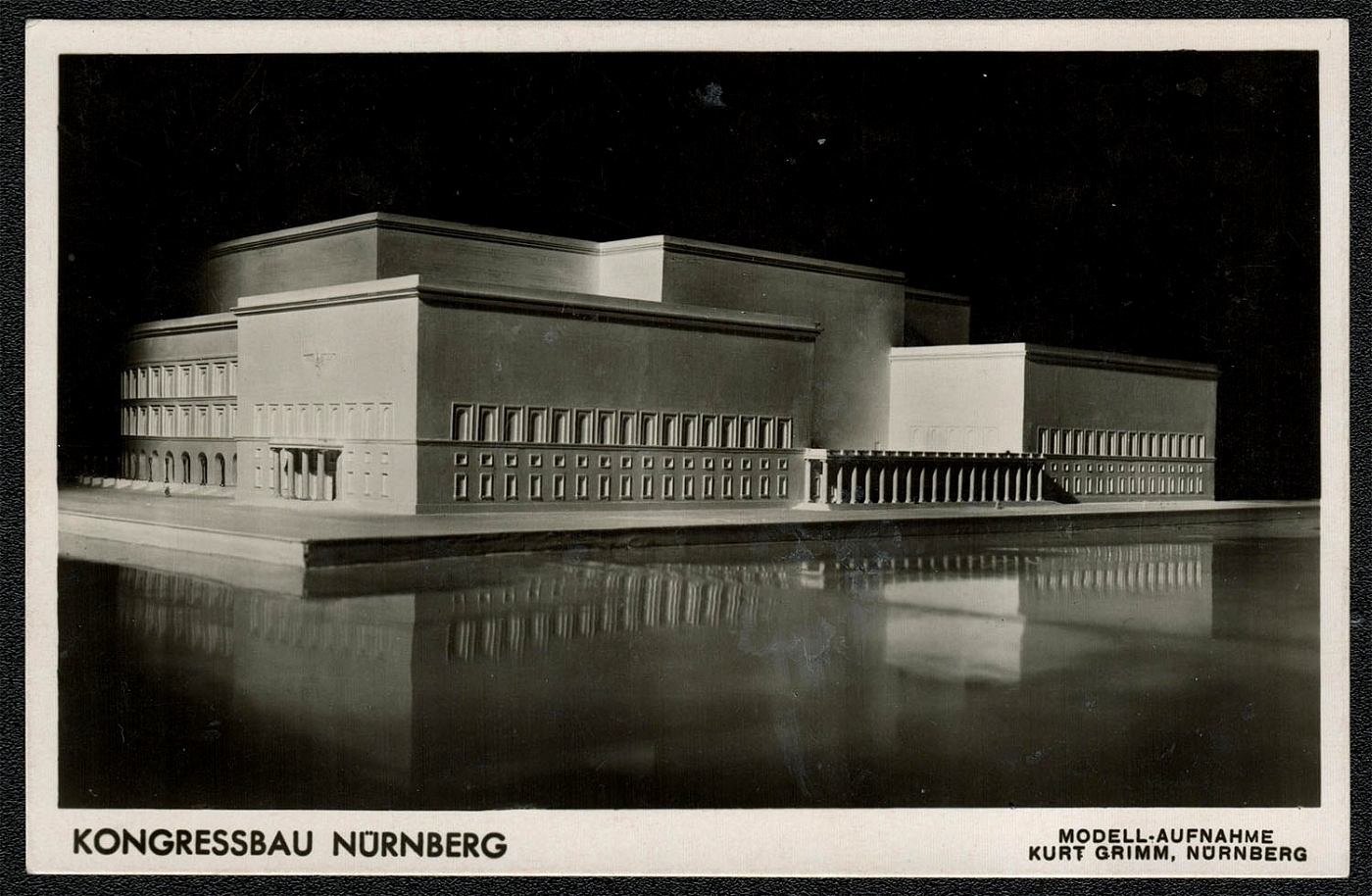
1939 Reich party rally of the NSDAP in Nuremberg. The Nurnberg Congressional Building
(The laying of the foundation stone for the Nurnberg Congressional Building on 11 September 1935 by the Fuhrer.) Model photography by Kurt Grimm, Nurnberg. Published by Verlag Bruno Panzer, No. 2 Tucherstr., Nurnberg.
Unsold
398
-
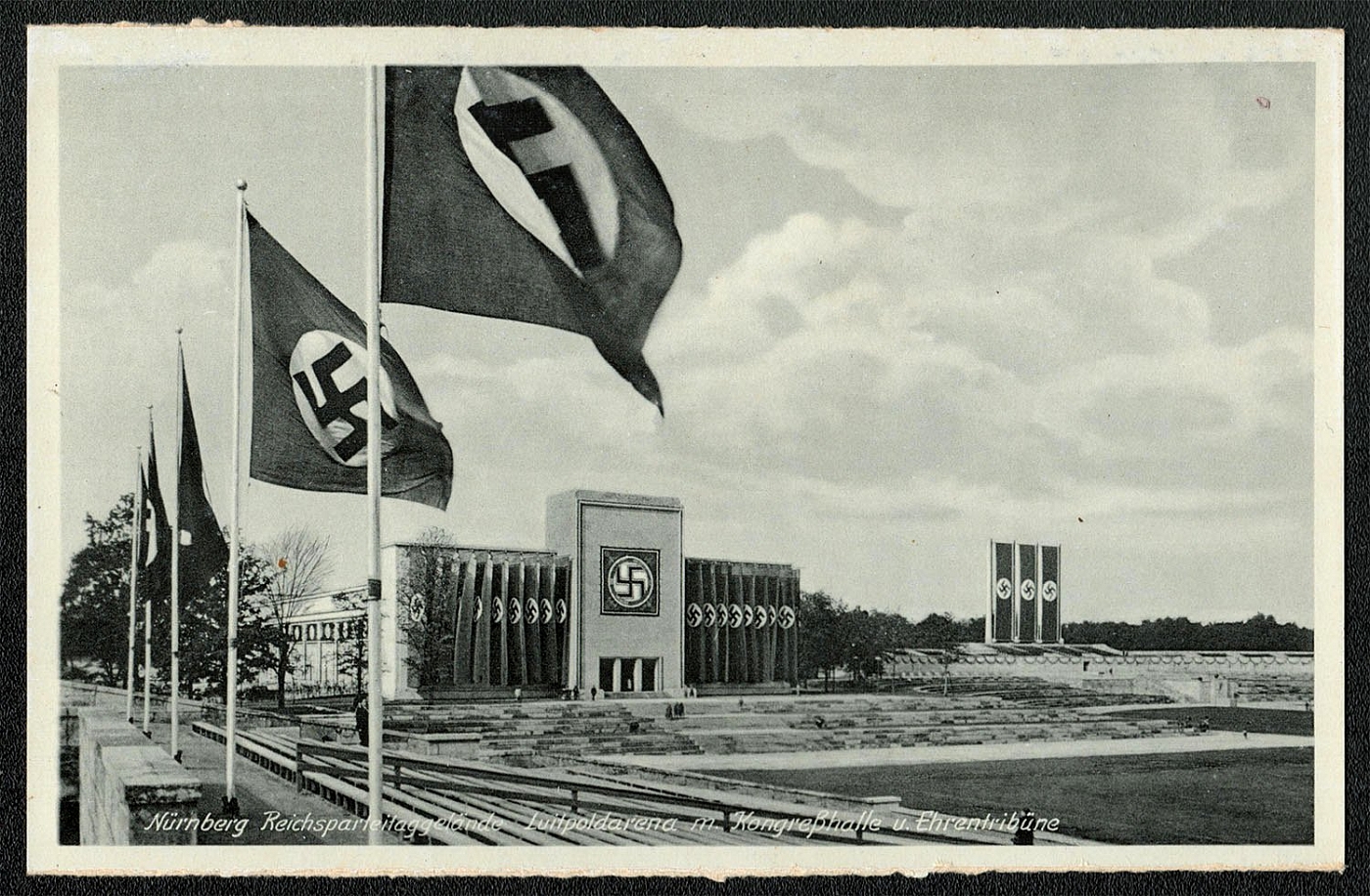
1939 Reich party rally of the NSDAP in Nuremberg. Reichsparteitag Grounds Luitpold Arena with Congress Hall and Platform of Honor
Nurnberg. Reichsparteitag Grounds Luitpold Arena with Congress Hall and Platform of Honor Published by Verlag und Eigentumsrecht Liebermann & Co., Nurnberg
Unsold
399
-
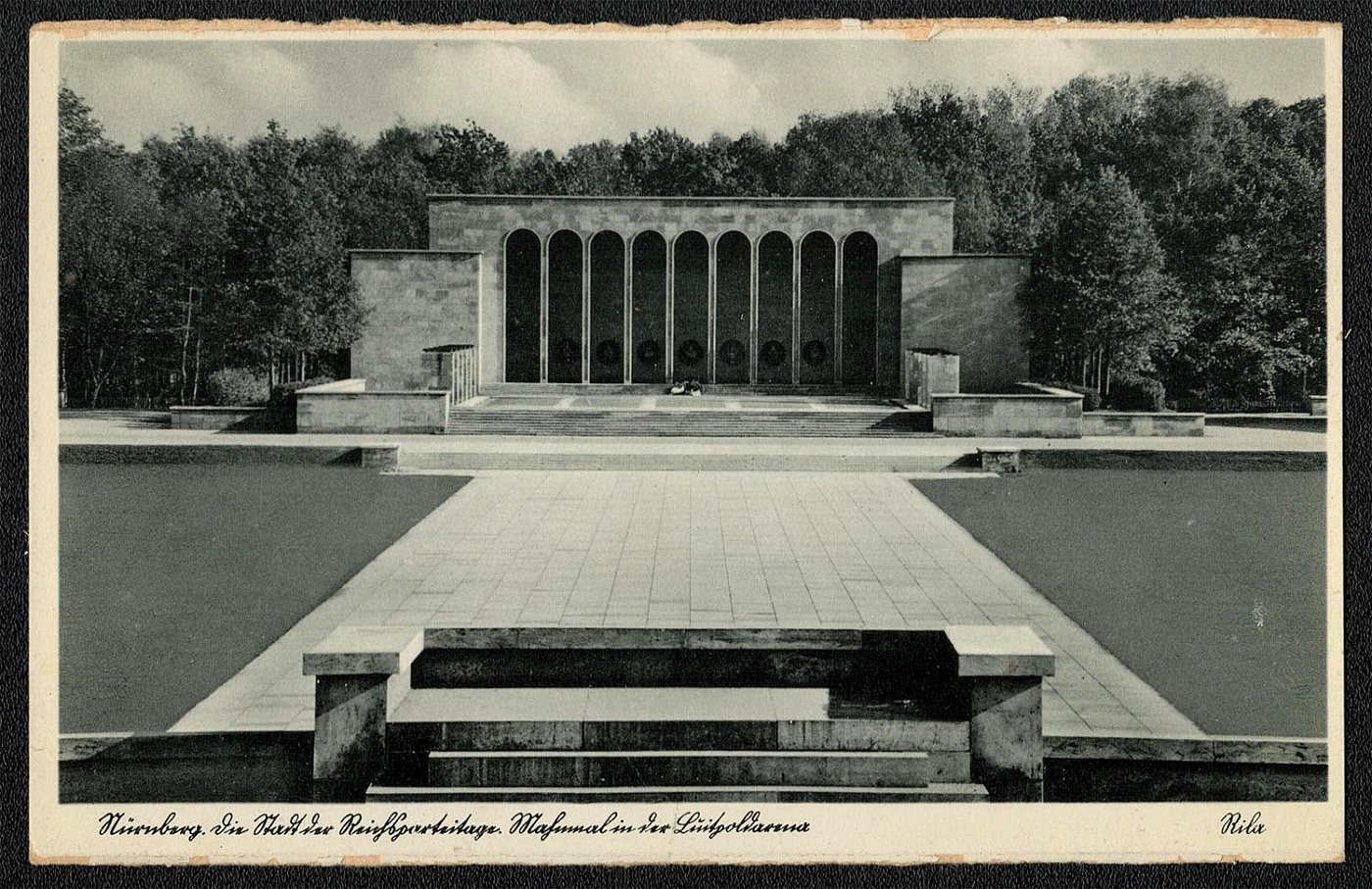
1939 Reich party rally of the NSDAP in Nuremberg. The Memorial in the Luitpoldarena
Nurnberg. The City of the National Party Rally. The Memorial in the Luitpoldarena. Unused photocard published by Ludwig Riffelmacher, Furth i. Bayern, Wiirzburger Strasse 201 (5056/40/253)
Unsold
400
-
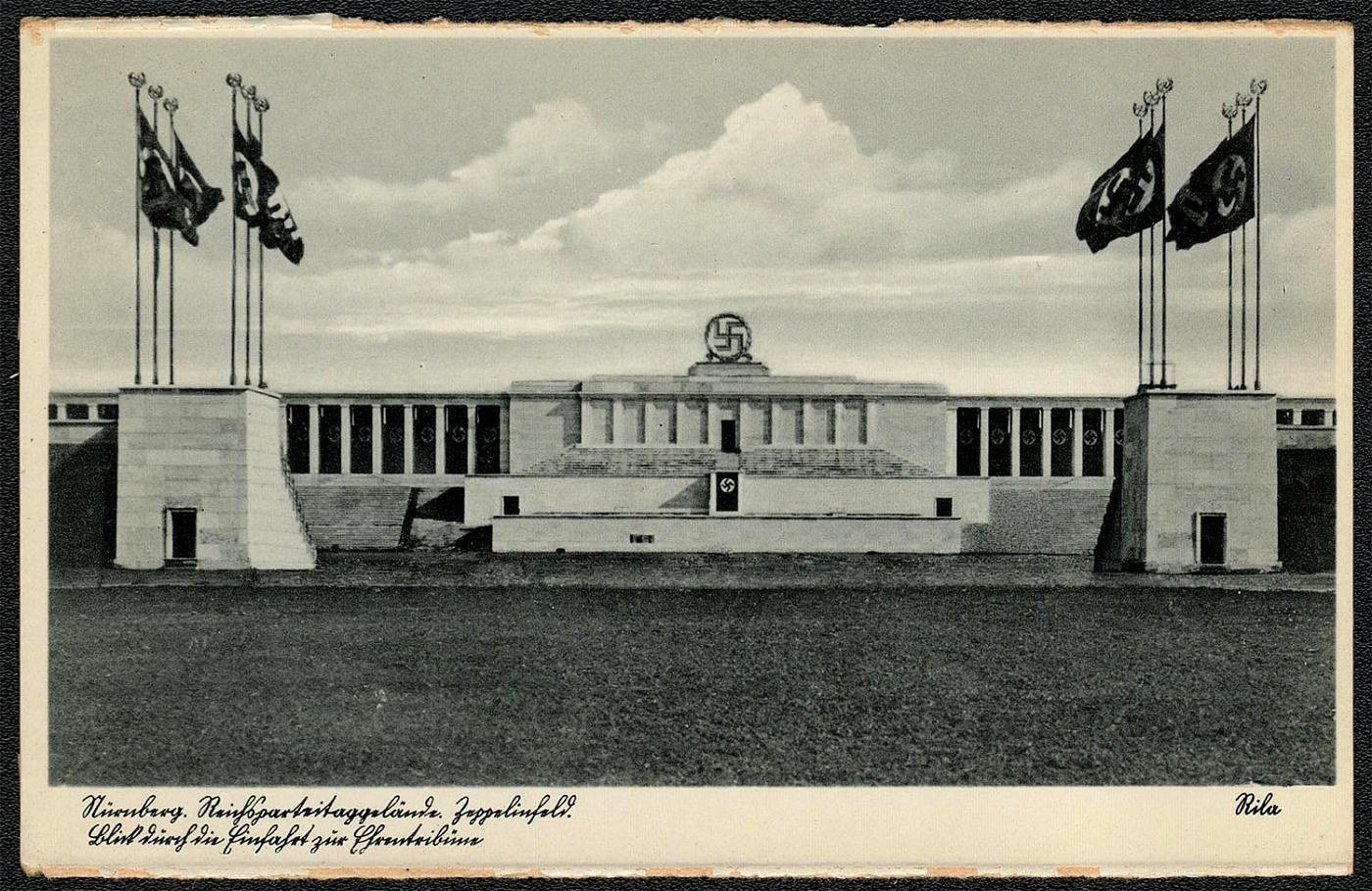
1939 Reich party rally of the NSDAP in Nuremberg. Zeppelinfeld
Nurnberg. The National Party Rally Grounds. Zeppelinfeld. View of the entrance to the Platform of Honor Unused photocard (6086/40/288) published by Ludwig Riffelmacher, Furth i. Bayern, Wurzburger Strasse 201
Unsold
Lots:
401 - 802
Lot Number
Price
401
-
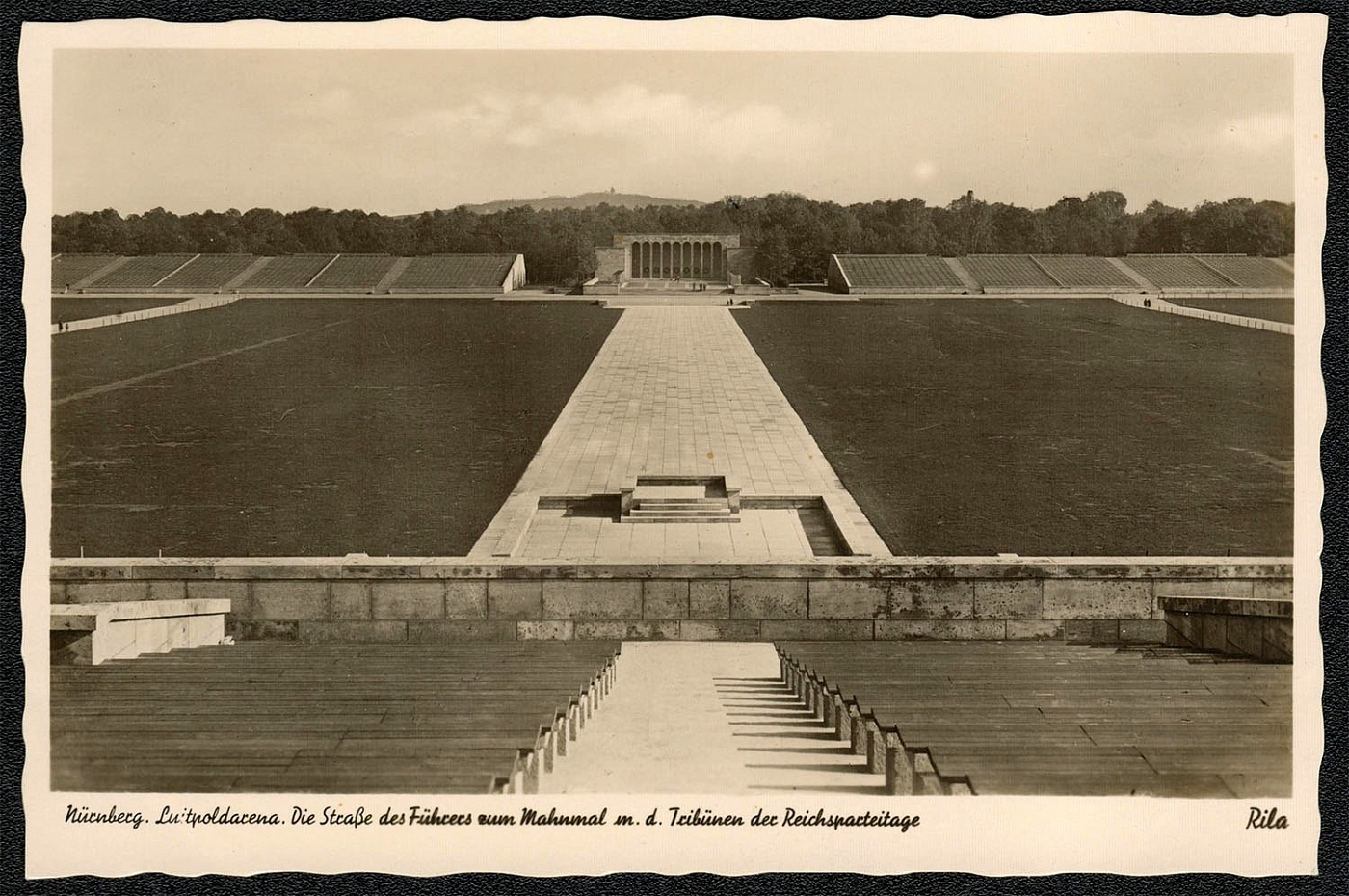
1939 Reich party rally of the NSDAP in Nuremberg. The Luitpold Arena
Nurnberg. The Luitpold Arena. The Thoroughfare of the Fuhrer to the Memorial Platform of the National Party Rallies. Published circa 1938 by Verlag von Ludwig Riffelmacher, Unterfarrnbach iiber Furth i. Bay. (Nr. 5053/40/250)
Unsold
402
-
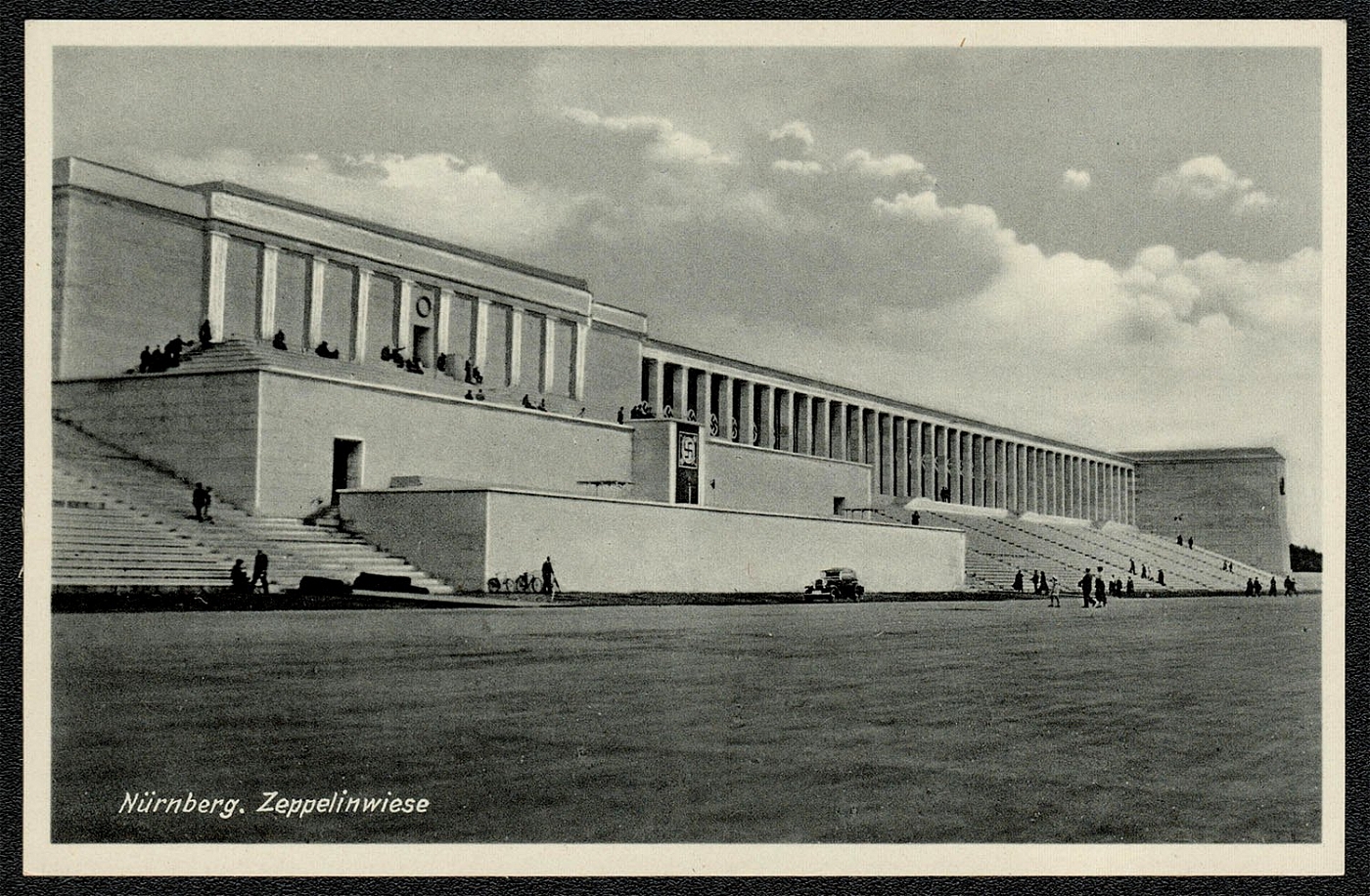
1939 Reich party rally of the NSDAP in Nuremberg. Zeppelin Meadow
Nurnberg. Zeppelin Meadow (Card No. 60/309) Published by A. Semank, Nurnberg in 1938.
Unsold
403
$25
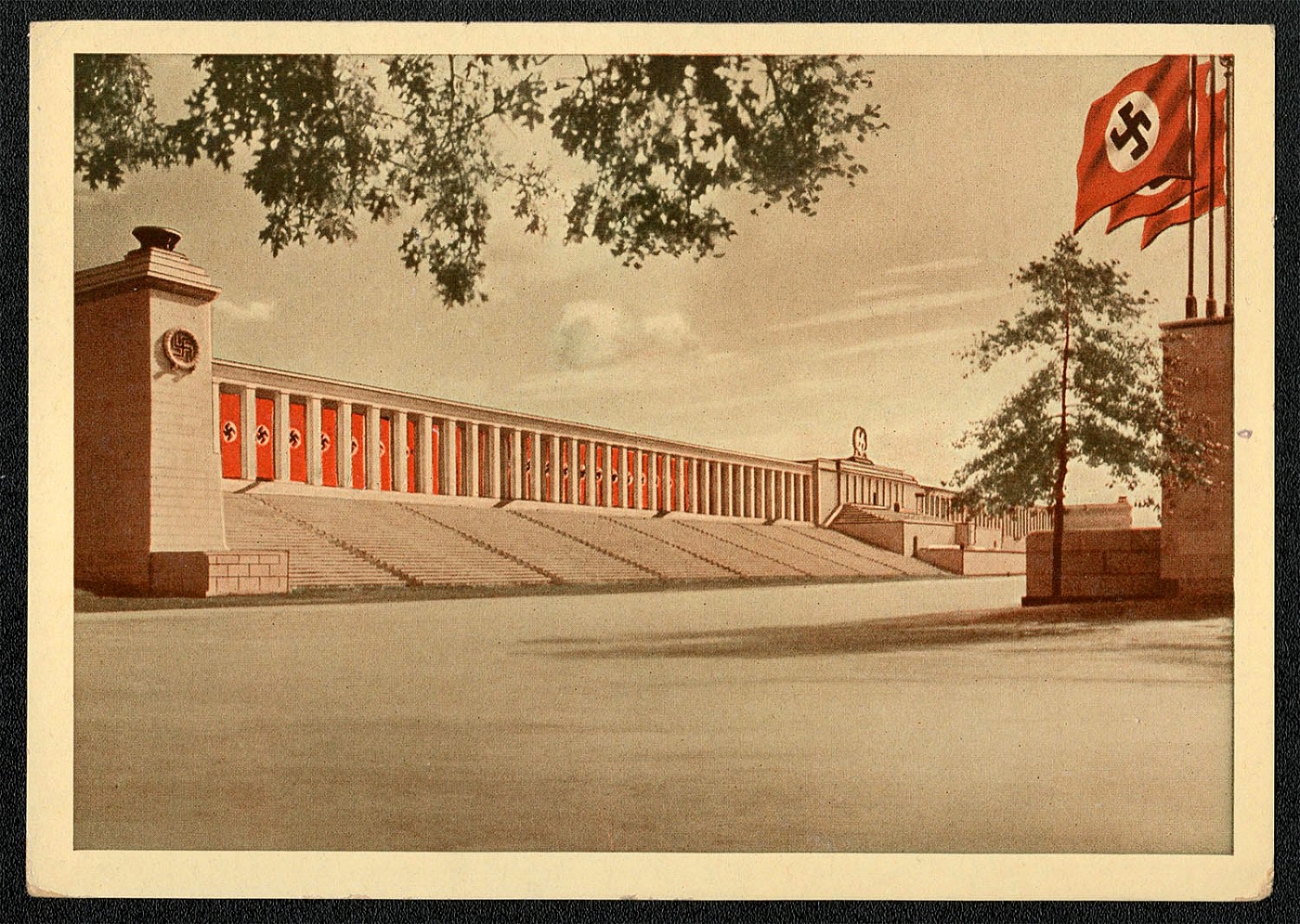
1939 Reich party rally of the NSDAP in Nuremberg. Zeppelinfeld - General View of the Platform of Honor
Nurnberg. Reichsparteitag Grounds Zeppelinfeld - General View of the Platform of Honor Published by Kunstveriag Georg Michel, Nurnberg-Ost circa 1938.
Sold for:
$25
404
-
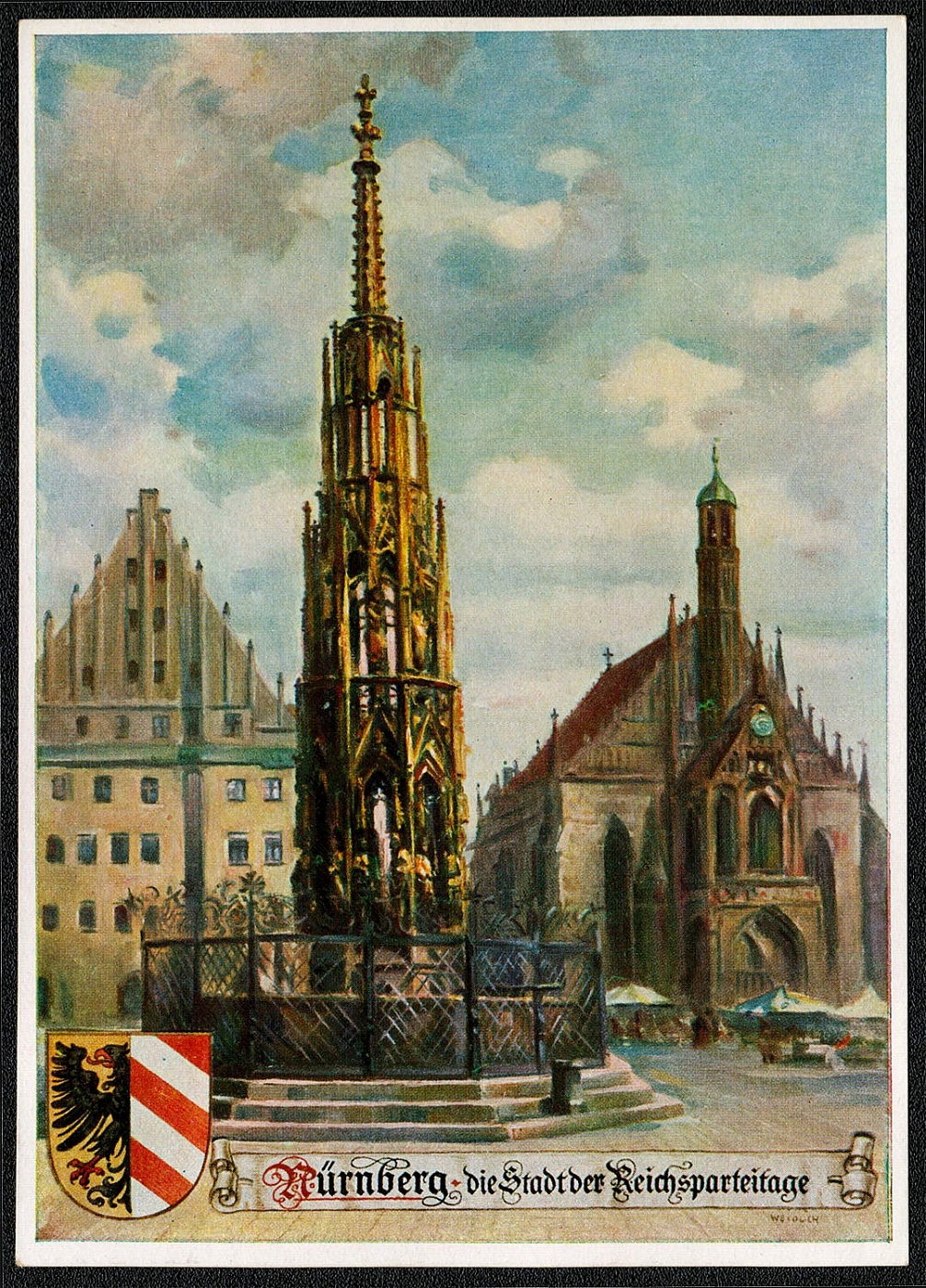
1939 Reich party rally of the NSDAP in Nuremberg. The Schoner Brunnen and Church of Our Lady on Adolf Hitler Platz
(The Schoner Brunnen and Church of Our Lady on Adolf Hitler Platz) View card (Series 1) published by Verlag Wilhelm Serz of Nurnberg, circa 1938. “Continue north and cross the bridge over the Pegnitz River at its most picturesque point Heilig-Geist-Spital (brooding over the dark water), and soon you’ll reach the city’s central market square, the Hauptmarkt, with the delicate late-Gothic Frauenkirche standing modestly on one side and the handsome Schoner Brunnen fountain in the center.”
Unsold
405
-
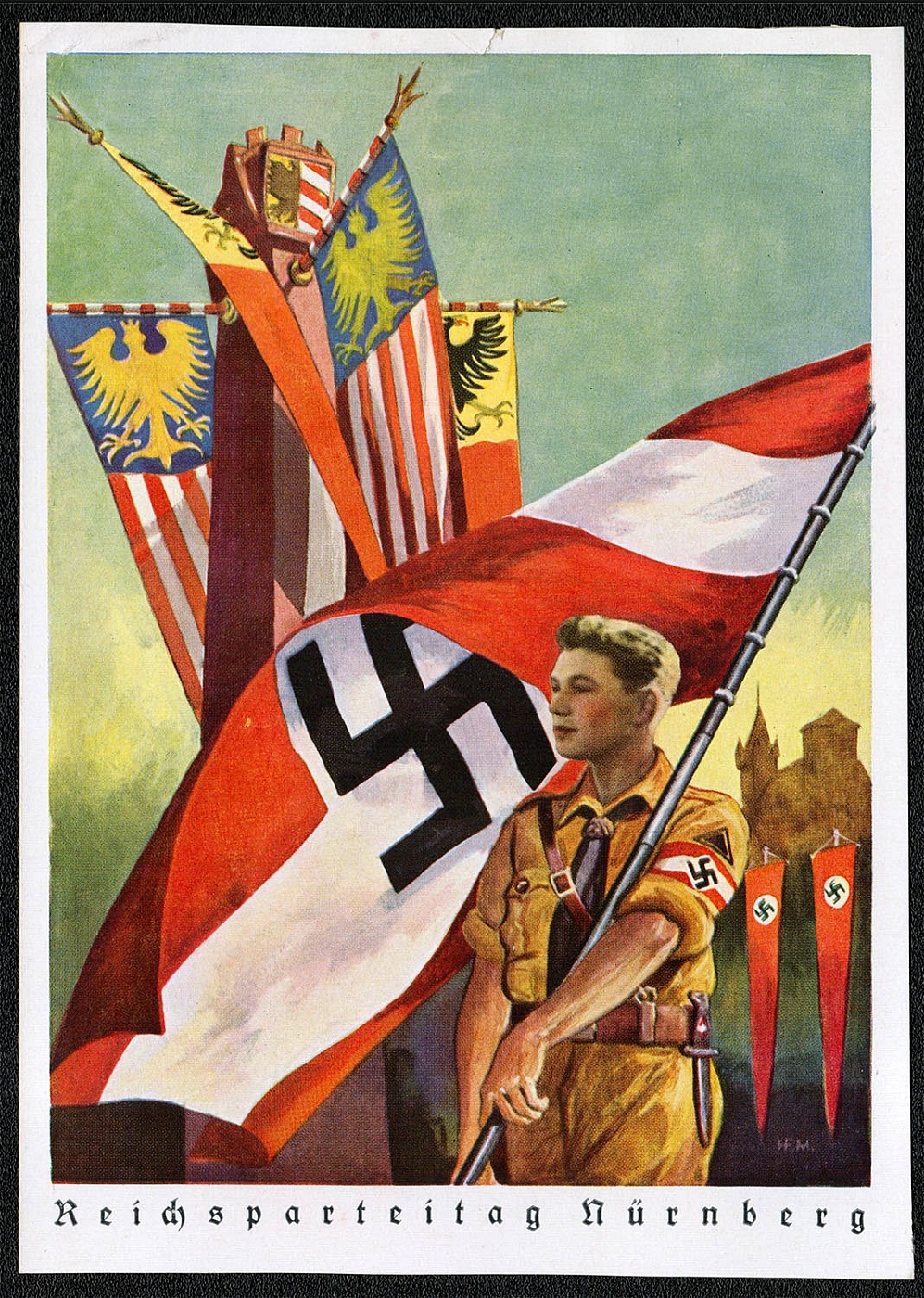
1939 Reich party rally of the NSDAP in Nuremberg. Hitlerjugend flag. UNISSUED, PROBE on Painting Canvas
The NS-Presseamtes announcement of the cancellation of the 1939 Reichsparteitag on 26 August came as a painful surprise to those companies which had secured for themselves a lucrative share of the market in Rally souvenirs. Presumably vast quantities of cards of various kinds were printed to commemorate the event but what happened to most of them remains a mystery. In recent years, however, an artists’ proof sheet (Andruck filr den Kiinstler) has come to the philatelic market.
Unsold
406
-

1939 Reich party rally of the NSDAP in Nuremberg. SA and SS man. UNISSUED, PROBE on Painting Canvas
These cards were apparently slated for a new Hoffmann series, but are printed on waste cardboard with no conventional inscription on the reverse to confirm their origin. They all have striking color designs with a collage of National Socialist symbols. They bear no full signatures, but the initials HF.M do appear, and they almost certainly stand for Hans Friedmann, Munich, a frequent Hoffmann artist.
Unsold
407
-

1939 Reich party rally of the NSDAP in Nuremberg. The Nuremberg Eagle. UNISSUED, PROBE on Painting Canvas
Most of the individual proofs in this series are found in good condition as is the one above. However, according to the dealer from whom this set was purchased, the full sheet was water damaged before reaching the philatelic market. Two examples of the above card seen by this collector have exhibited similar distress.
Unsold
408
-
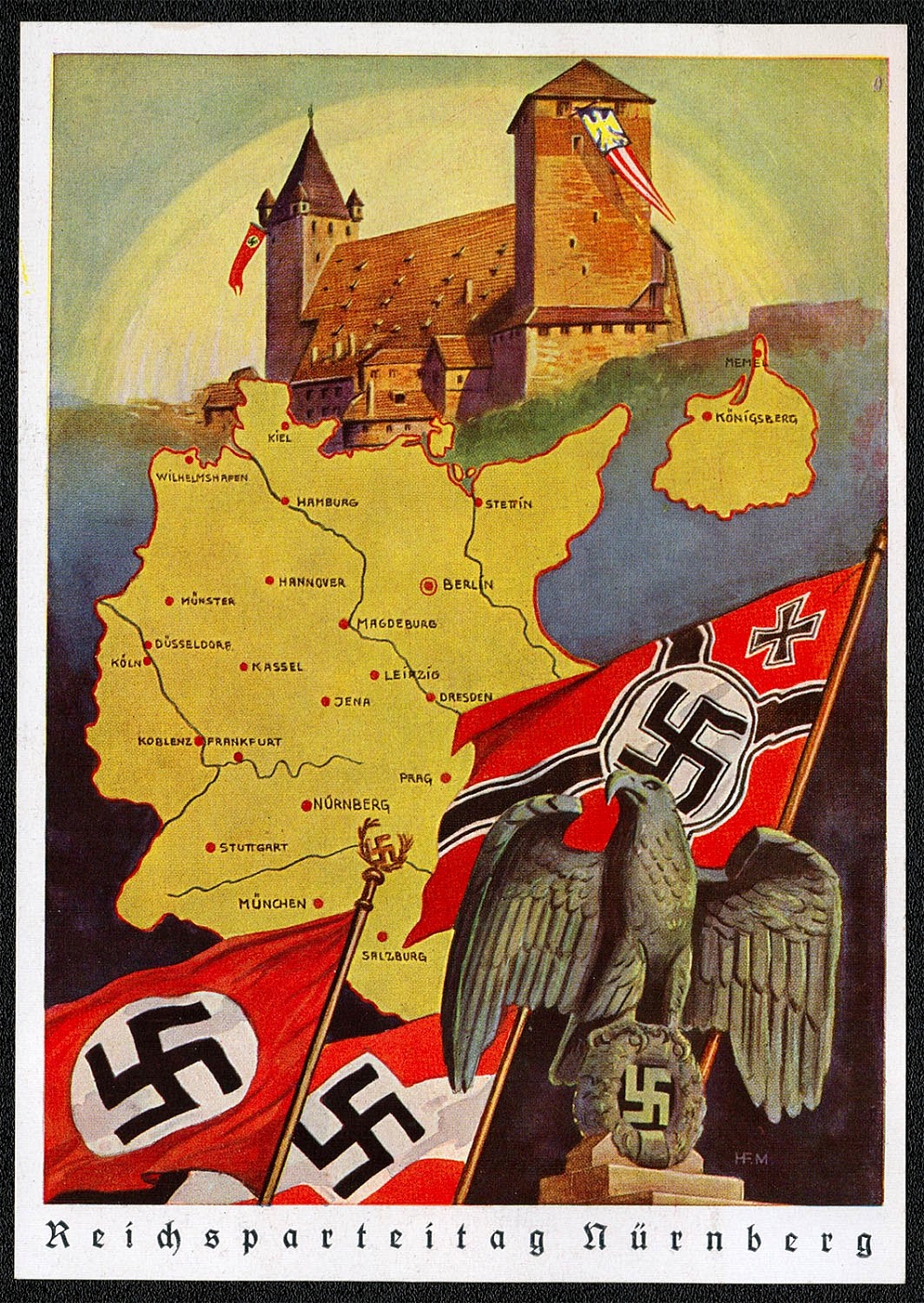
1939 Reich party rally of the NSDAP in Nuremberg. The Nuremberg Eagle and a Map. UNISSUED, PROBE on Painting Canvas
Following his successful seizure of the Sudetenland in 1938, Hitler demanded the return of Memelland. Lithuania eventually conceded and the territory was returned to Germany in March 1939. It is safe, therefore, to assume these cards were printed after that date.
Unsold
409
-
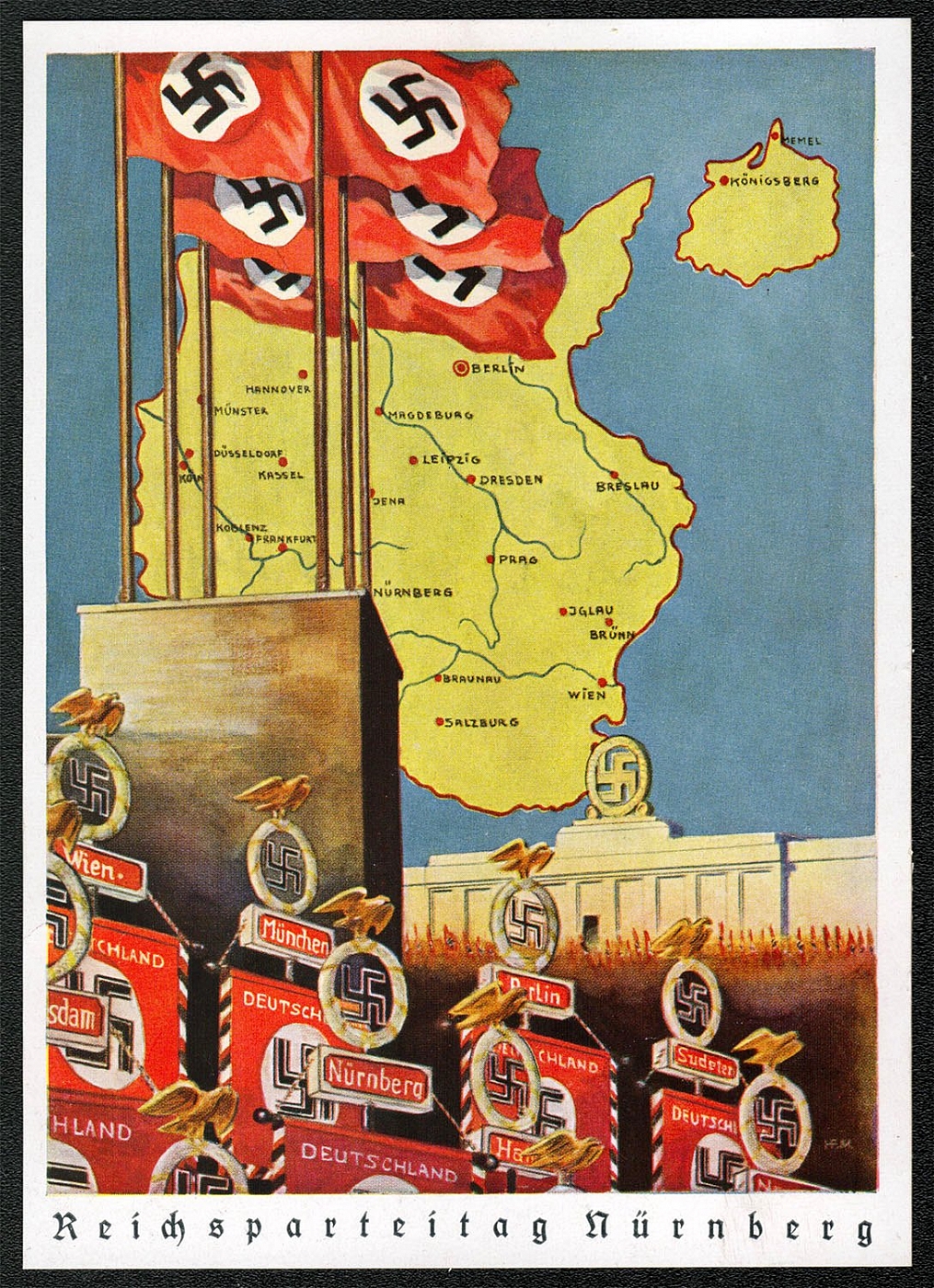
1939 Reich party rally of the NSDAP in Nuremberg. Standards in the Party Rally Grounds. UNISSUED, PROBE on Painting Canvas
As in many previous Hoffmann designs, the year date was not incorporated. However, the above proof and one other include the Baltic seaport Memel as part of the Greater German Reich on the depicted map.
Unsold
410
-
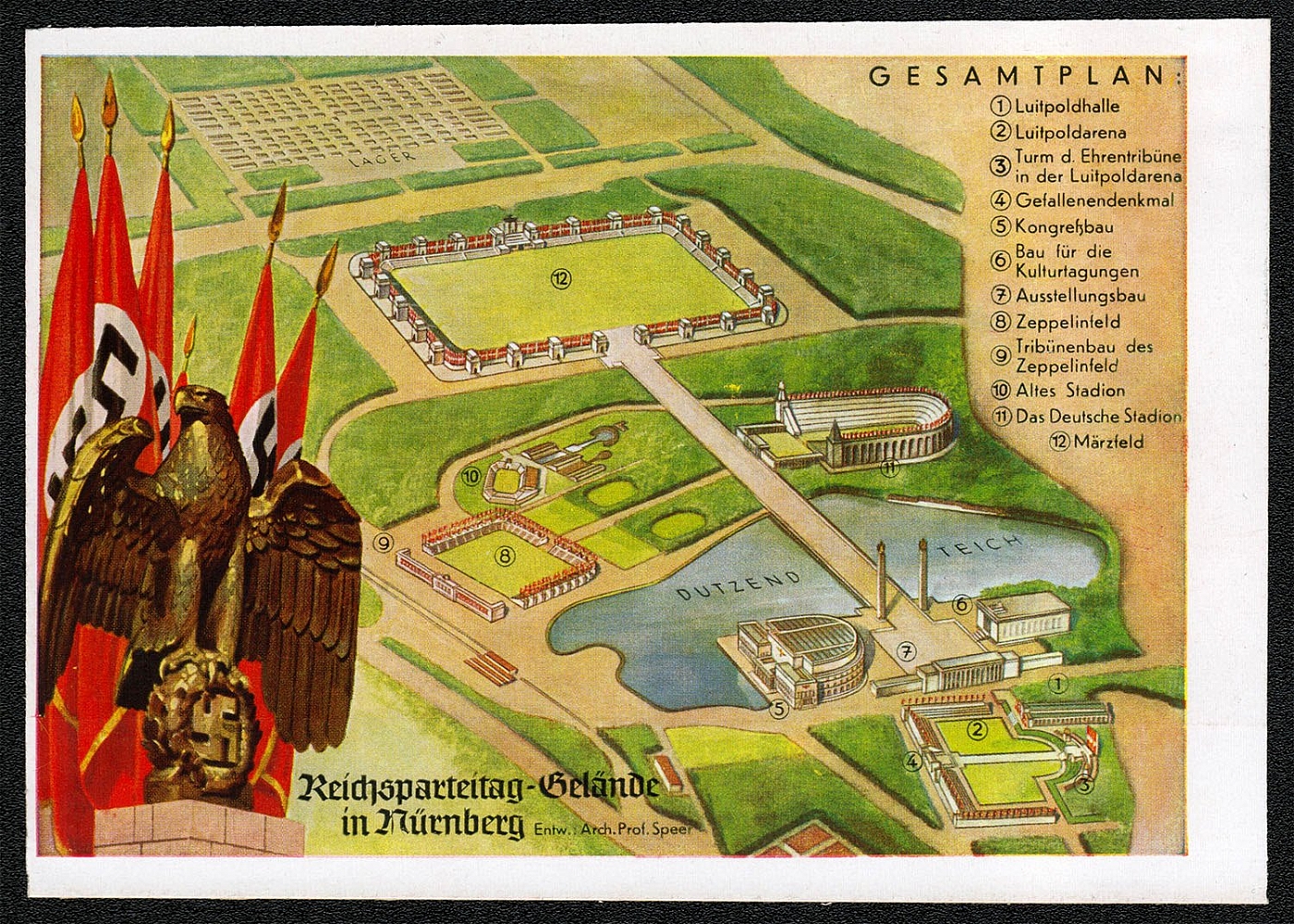
1939 Reich party rally of the NSDAP in Nuremberg. The Nuremberg Party Rally Grounds. UNISSUED, PROBE on Painting Canvas
The above card is the most rare of the 1939 series although it is identical to Hoffmann card 37/1 that was issued in 1937. A translation of the Gesamtplan (overall plan) is as follows: (1) Luitpoldhalle (Luitpold Hall) 2) Luitpoldarena (Luitpold Arena) (3) Turm d. Ehrentribiine in der Luitpoldarena (Platform of Honor Tower) (4) Gefallendenkmal (Memorial to the Fallen) (5) Kongressbau (Congress Building) (6) Bau fiir die Kulturtagungen (Building for Cultural Conferences) (7) Ausstellungsbau (Exhibition Building) (8) Zeppelinfeld (Zeppelin Field) (9) Tribiinenbau des Zeppelinfeld (Zeppelin Field Speaker’s Platform) (10 ) Aites Stadion (Old Stadium) (11) Das Deutsche Stadion (German Stadium) (12) Martfeld (March Field) Dutzend Teich (Dutzend Lake)
Unsold
411
-
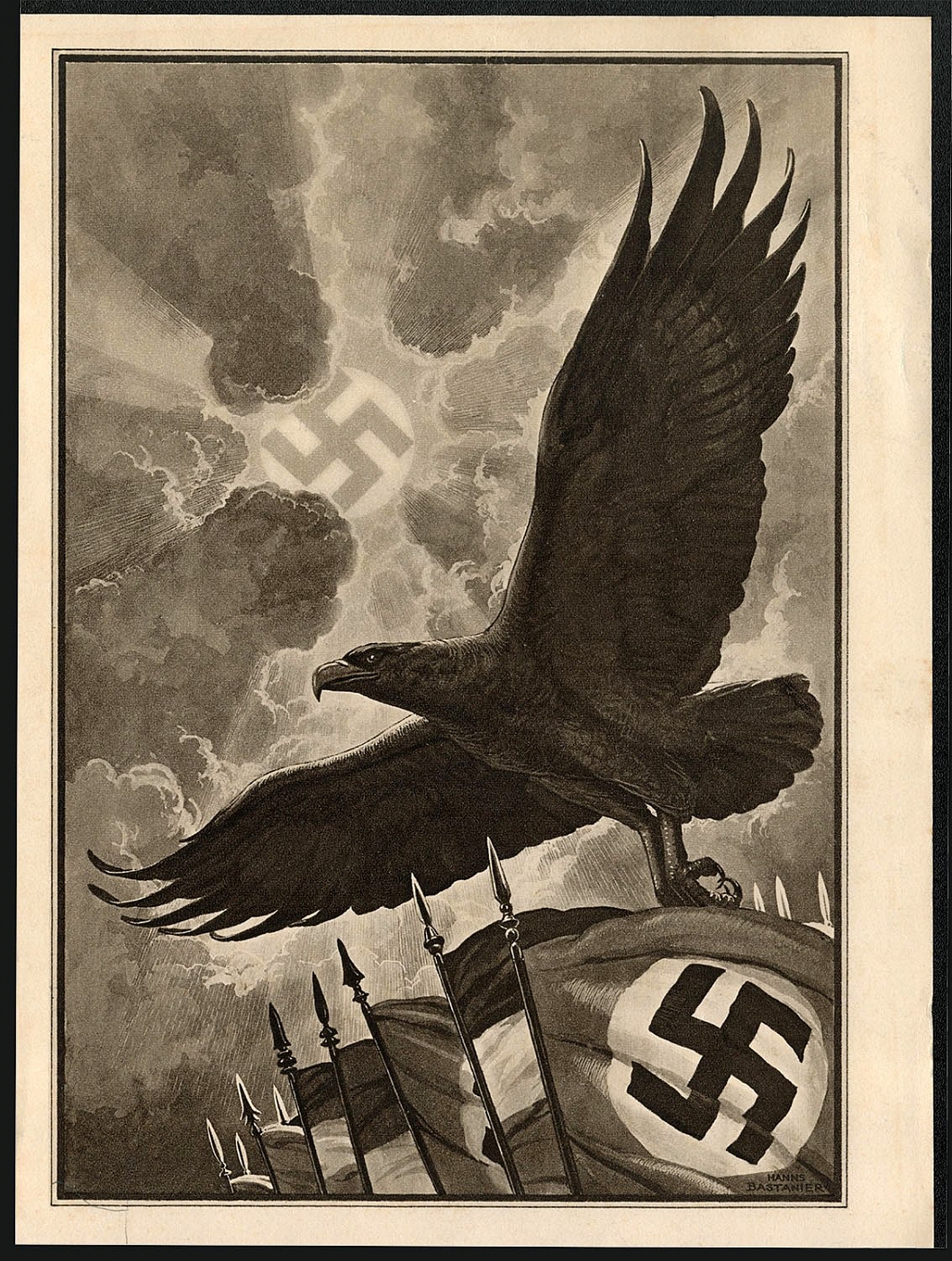
412
$120

1933 The Special Greetings Big Size Telegram overleaf sent from the Rally Grounds, Reich Eagle
the message page of the Special Greetings Telegram overleaf sent from the Rally Grounds at 3:10 PM on 2 September 1933 to the Kohler wedding couple with the salutation “Sieg Heil” (Hail Victory). The telegram form (LX 9) was on sale in the camp post offices at the Niirnberg Rally from 30 August to 6 September 1933. The Reichsadler design on the front cover and the Garrison Church in Potsdam on the back, were by Hans Bastanier. The form itself was printed in the Berlin Staatsdruckerei.
Sold for:
$120
413
$170

1934 The Special Greetings Big Size Telegram overleaf sent from the Rally Grounds, Reich Eagle
The message page of the Special Greetings Telegram overleaf sent from the Rally Grounds at 12:00 AM on 10 September 1934 to Elisabeth Kohler in Munchen with the salutation “Herzliche Griisse vom Parteitag” (Hearty Greetings from the Party Rally). Telegram form (LX 10) was designed to mark the event and was printed by the Berlin Staatsdruckerei for issue during the period 4-15 September 1934. The cover designs are by Emmy GHntzer and both feature the popular contemporary symbol, the emerging sun of National Socialism. The front cover depicts the Reichsadler soaring over Nurnberg Castle while the sun breaks through the dark clouds. The back cover design shows the Reichsadler spreading its wings in the warming rays of the symbolic sun. About 42,000 forms were sent during the Rally. A 10-word message cost only one Reichsmark.
Sold for:
$170
414
-
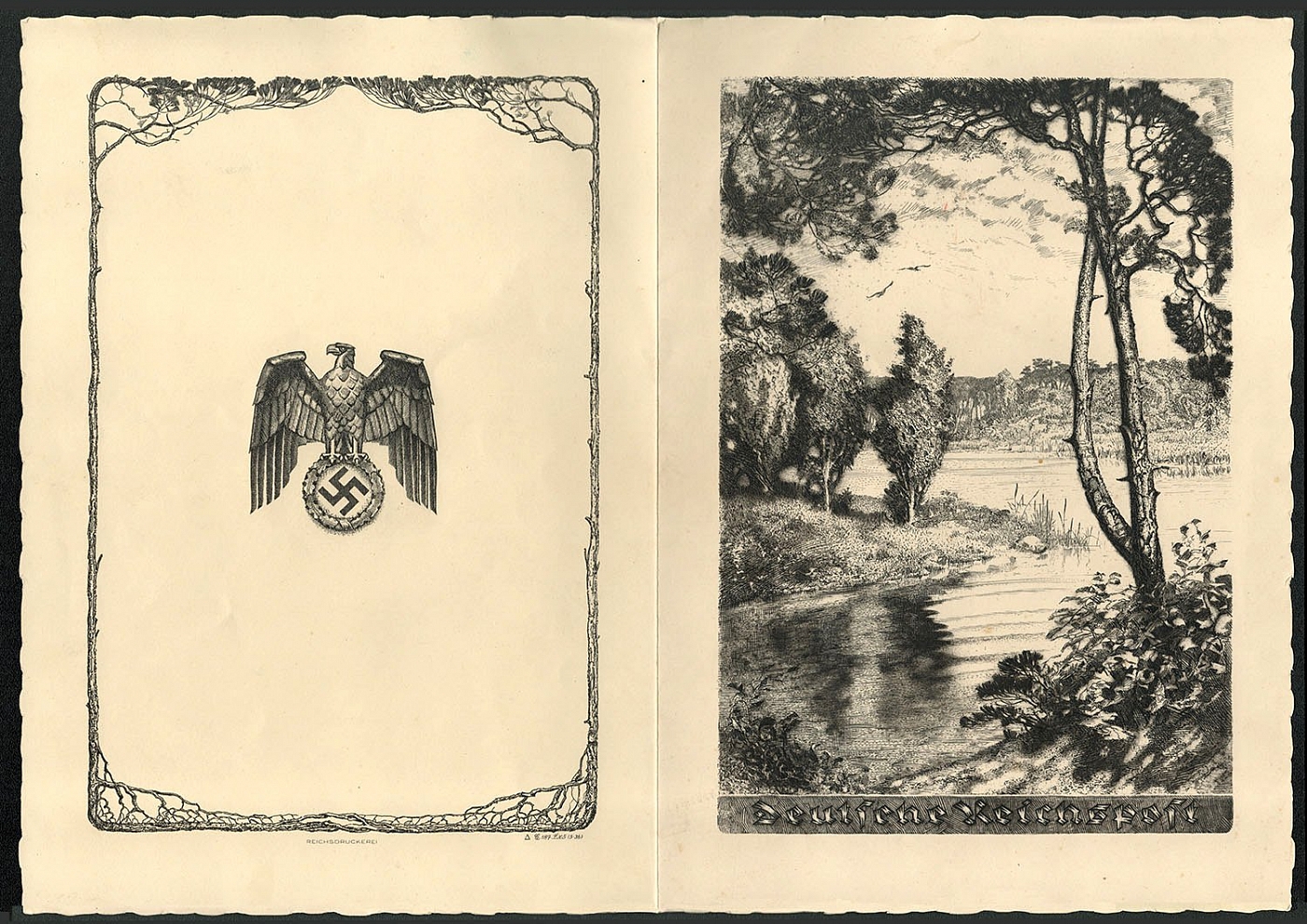
415
$120

1933 Germany Summons You Brochure for the NSDAP Plebiscite
Germany Summons You Brochure for the NSDAP Plebiscite of November 1933 On 14 October 1933 Hitler proclaimed Germany’s withdrawal from the League of Nations and ordered the Wehrmacht to resist with force if an attempt were made to apply sanctions. In a radio address delivered that evening, he applied to foreign affairs the dual tactics which had proved of such value to him in domestic affairs: he masked his belligerence by a torrent of words and show of amicability. He decided to hold a plebiscite on the issue, the first of his regime, and one staged with an enormous display of propaganda. This is turn was combined with new elections. For the Reichstag that had been elected on 5 March was to some extent still anachronistically divided on the pattern that had prevailed under the Wieinar Republic. Feelings of humiliation harbored for years, deep-seated resentment over the tricks by which Germany had been kept under since Versailles—all such emotions now broke forth and even critics of the regime hailed Hitler’s gesture. Hitler himself opened the campaign on 24 October with a major speech in the Berlin Sportpalast. He announced that the plebiscite was to take place on 12 November, one day after the fifteenth anniversary of the 1918 Armistice. Once more facing an electoral challenge, Hitler worked himself up into a trance-like paroxysm. “For my part I declare,” he cried out to the masses, “that I would sooner die than sign anything that in my most sacred conviction is not tolerable for the German people.”
Sold for:
$120
416
-
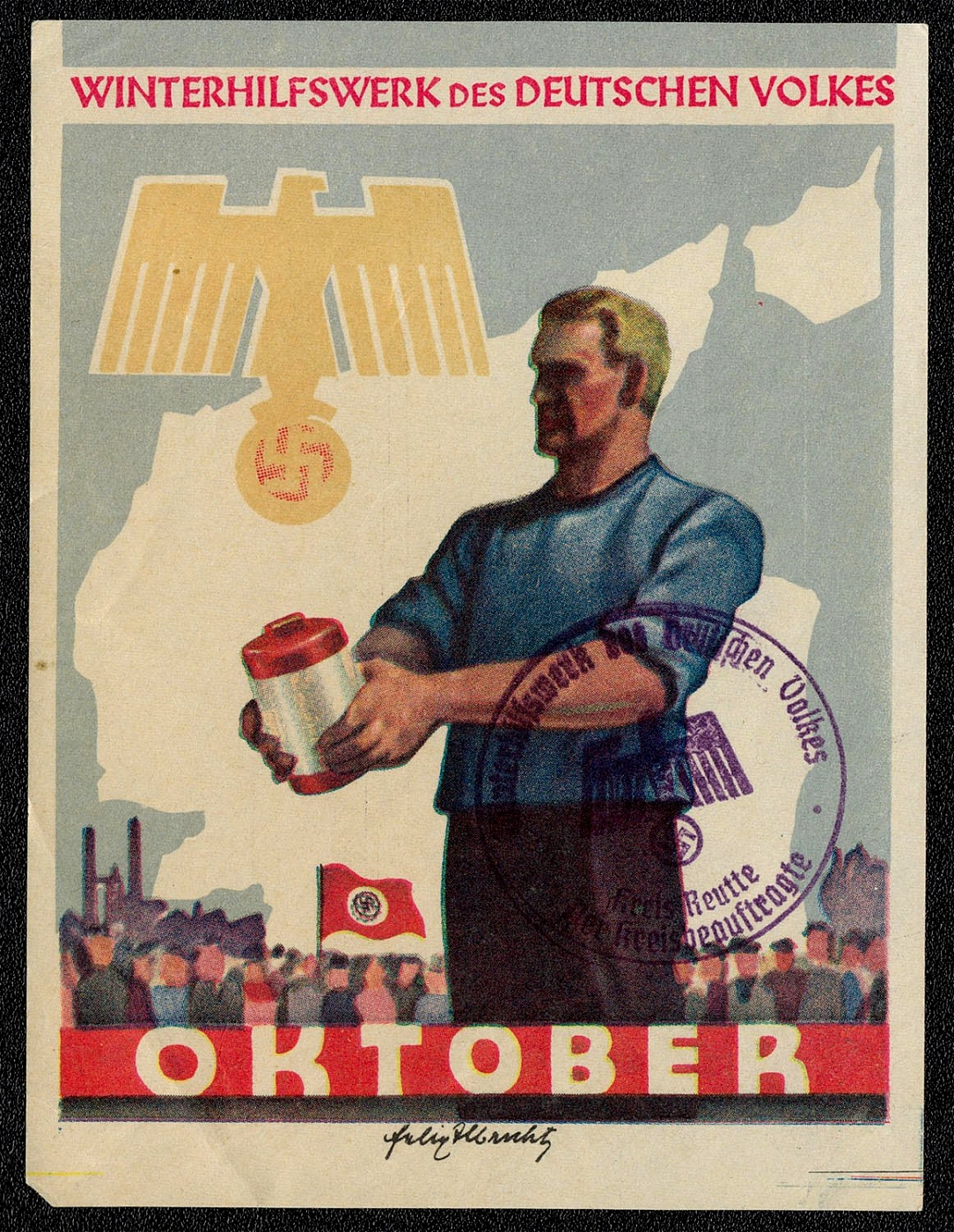
1937 WHW Donation Sheet with the hand stamp of the WHW Reutte County Deputy
WHW Donation Sheet with the hand stamp of the WHW Kreis Reutte Der Kreisbeauftragte (WHW Reutte County Deputy). Reutte was about 150 kin (93 miles) southwest of Munchen. As the core component of NS social policy, the WHW was designed to further the internal stabilization of the regime as well as its totalitarian infiltration. It served to eliminate material need, (the preeminent prestige objective of the authorities), to mobilize the population and facilitate total, close-knit control even within the private sphere of the home. It was designed to stimulate a sense of national awakening, and to synchronize and encourage voluntary conformity of the independent social service organizations. The Propaganda Ministry was portrayed as responsible for the WHW by means of film, newspaper, poster, and radio publicity. The WHW appealed to such concepts as “Volk community,” “national solidarity,” “readiness for sacrifice,” and to document a “socialism of deeds” that transcended groups and classes.
Unsold
417
-
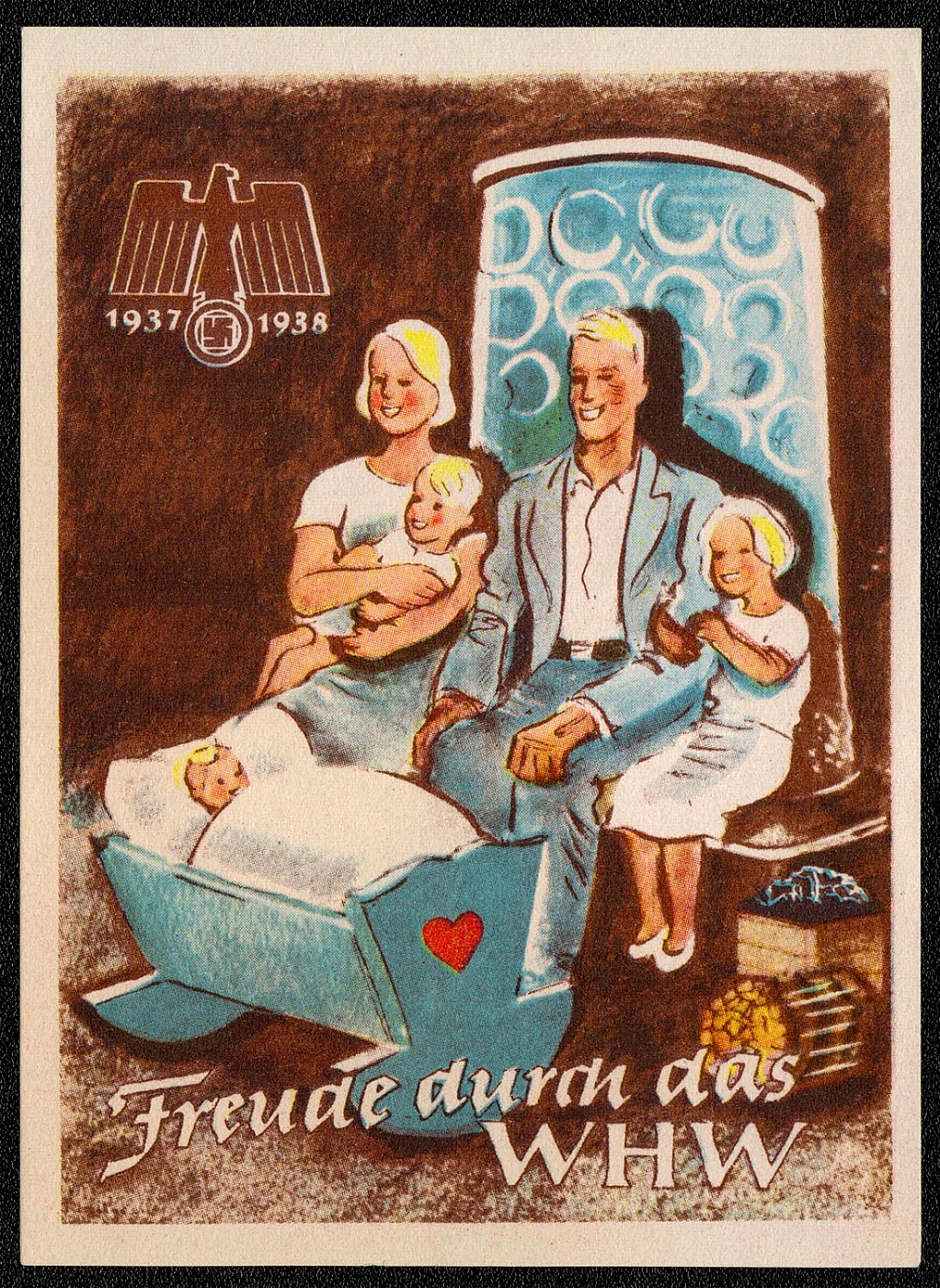
1937 WHW Donation Sheet Joy through the WHW
WHW Donation Sheet Freude durch das WHW (Joy through the WHW). § The sorting out (Selektion) of “asocial” and “racially and biologically inferior” people, as well as the campaign against the “nuisance of begging” (Bettelunwesen) turned the WHW into a means of political and ideological oppression. The continual badgering for donations, privately and on the job, and the financial burden involved, especially for people at lower income levels, led increasing to exasperation and to a decline in “voluntary” willingness to donate. Countless instances of quarrels between the NSV/WHW and government agencies over authority and jurisdiction, as well as over dual responsibility, point to a basic and ultimately unresolved structural defect of the Third Reich: the dualism between party and state.
Unsold
418
-
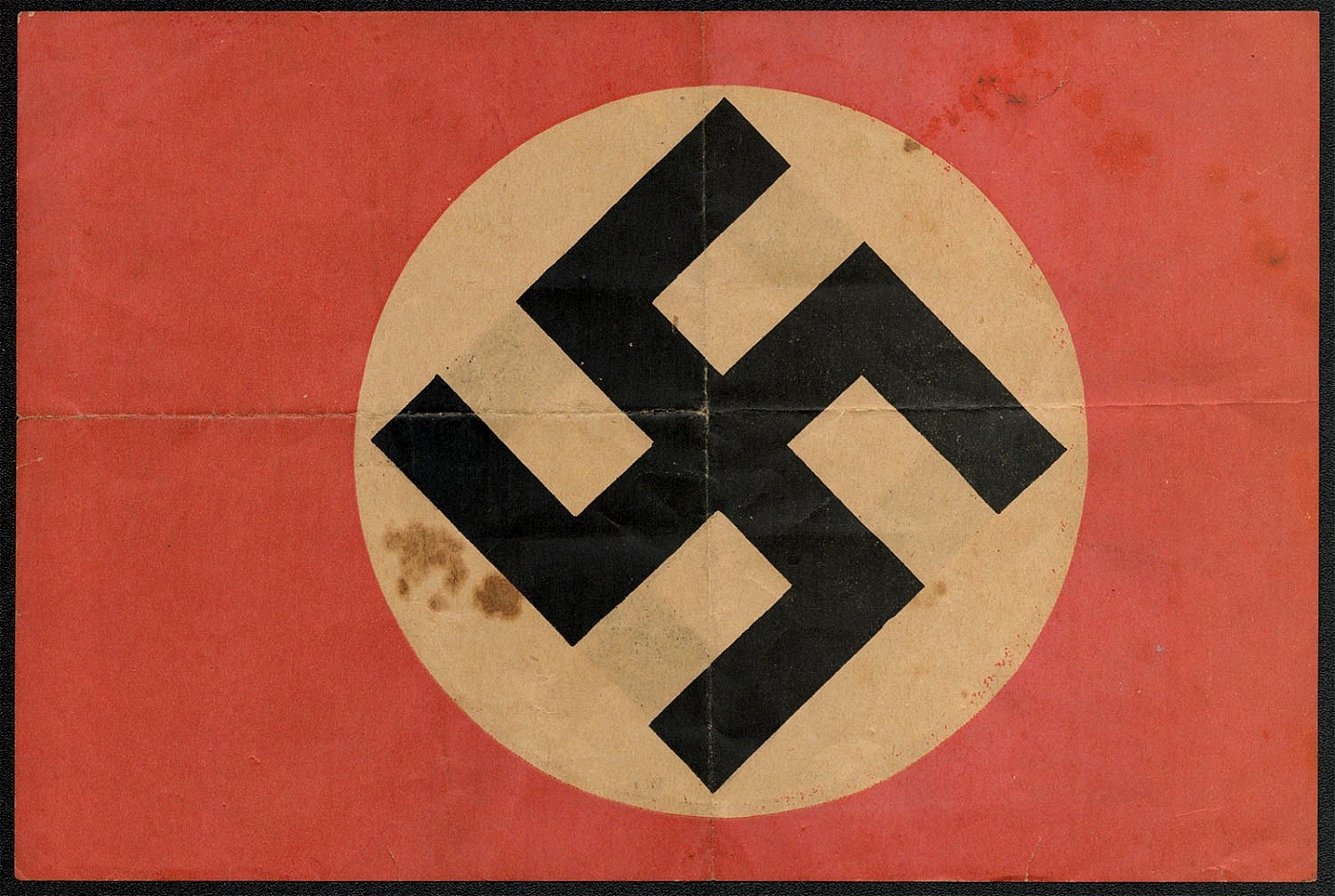
1933-39 Paper swastika two-sided flag such as this were hung from buildings and windows during NSDAP festivities
Paper swastika flags such as this were hung from buildings and windows during NSDAP festivities.
Unsold
419
-
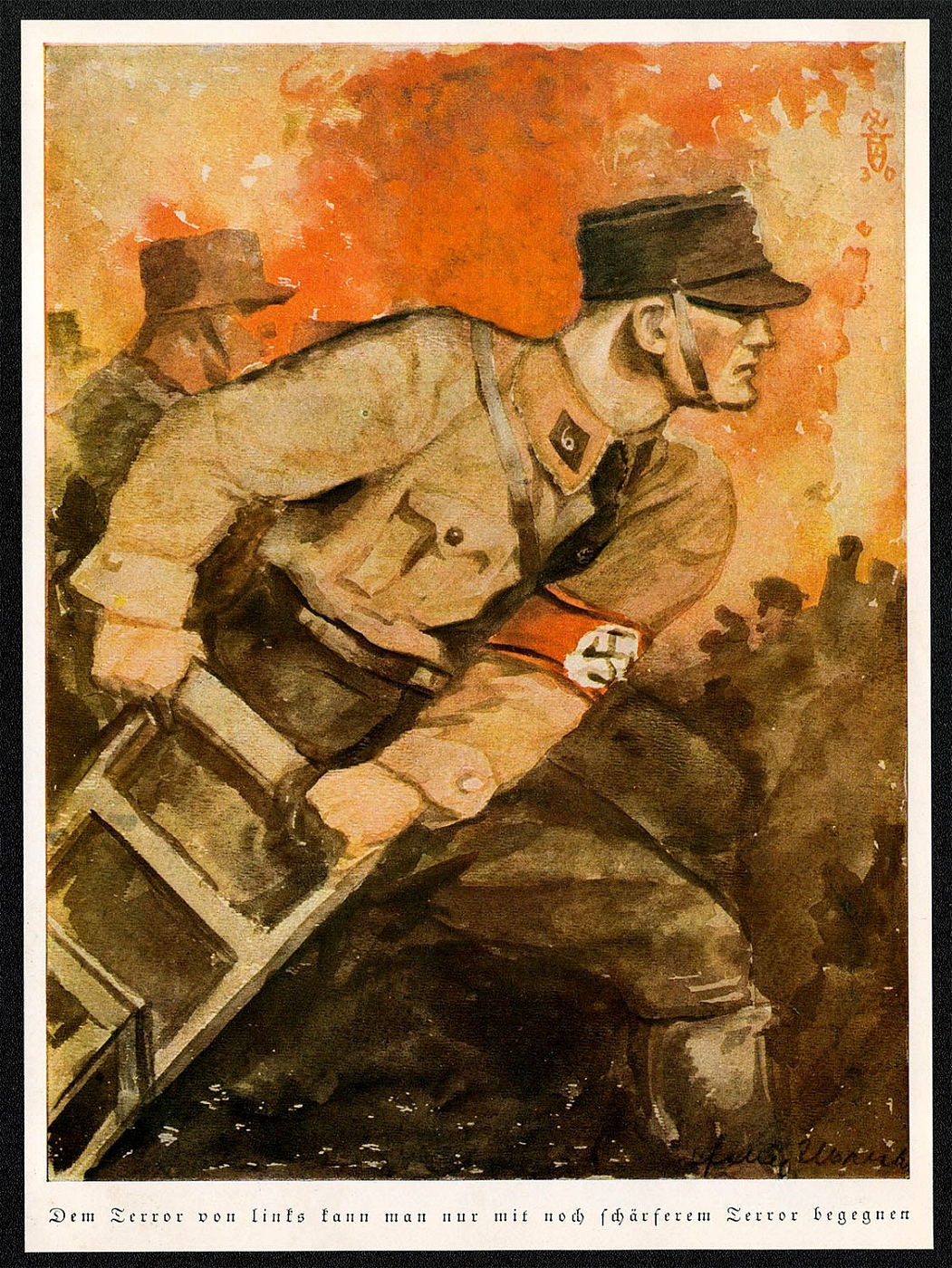
1933 SA Man in a Battle, Propaganda Poster
“The terror from the left can only be met with even stronger terror”
Unsold
420
-
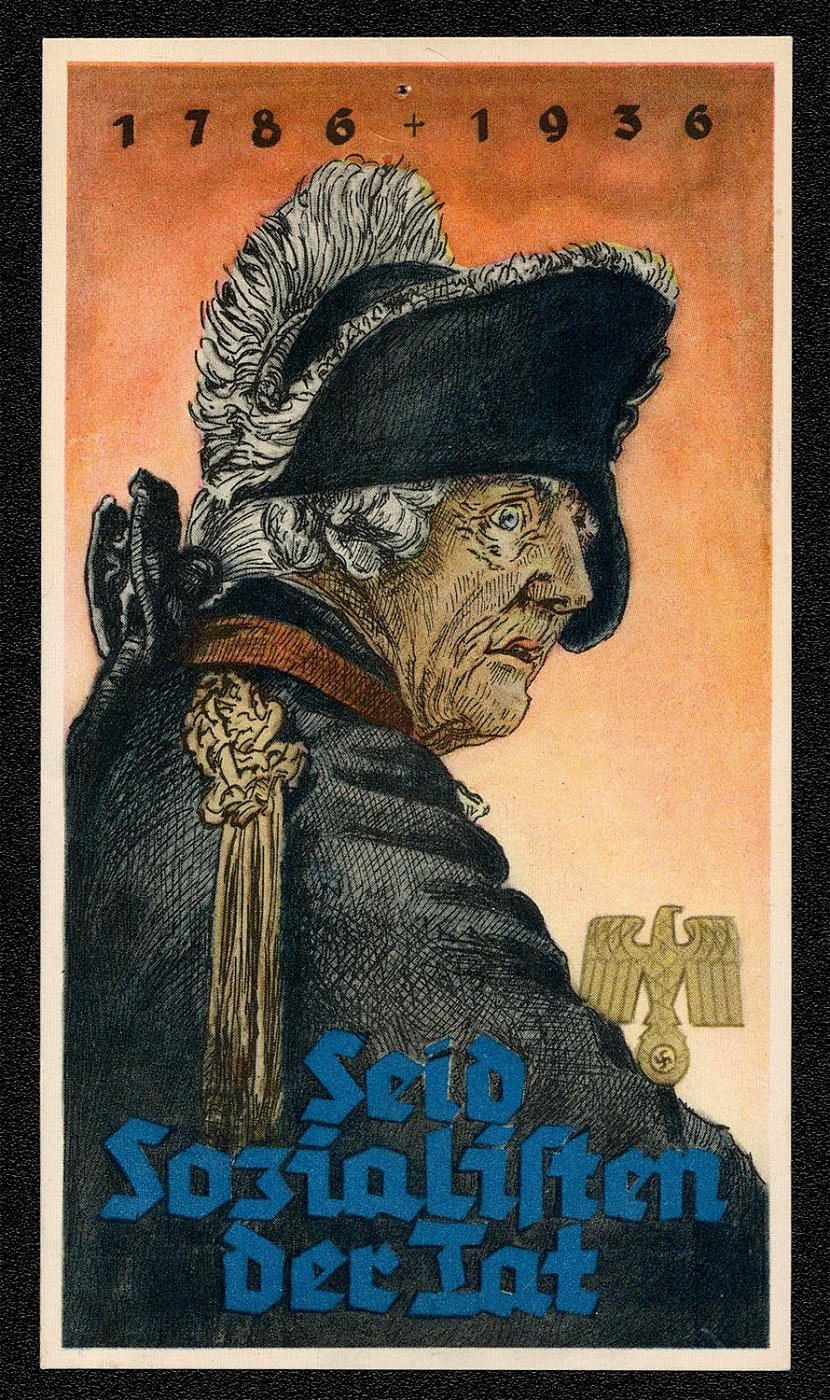
1934 Socialism is Action, Propaganda Poster
(Socialism is action.) Frederick the Great, third King of Prussia (1740 - 1786), ranks among the two or three dominant figures in the history of modern Germany. Under his leadership Prussia became one of the great states of Europe. Its territories were greatly increased and its military strength displayed to striking effect.
Unsold
421
-
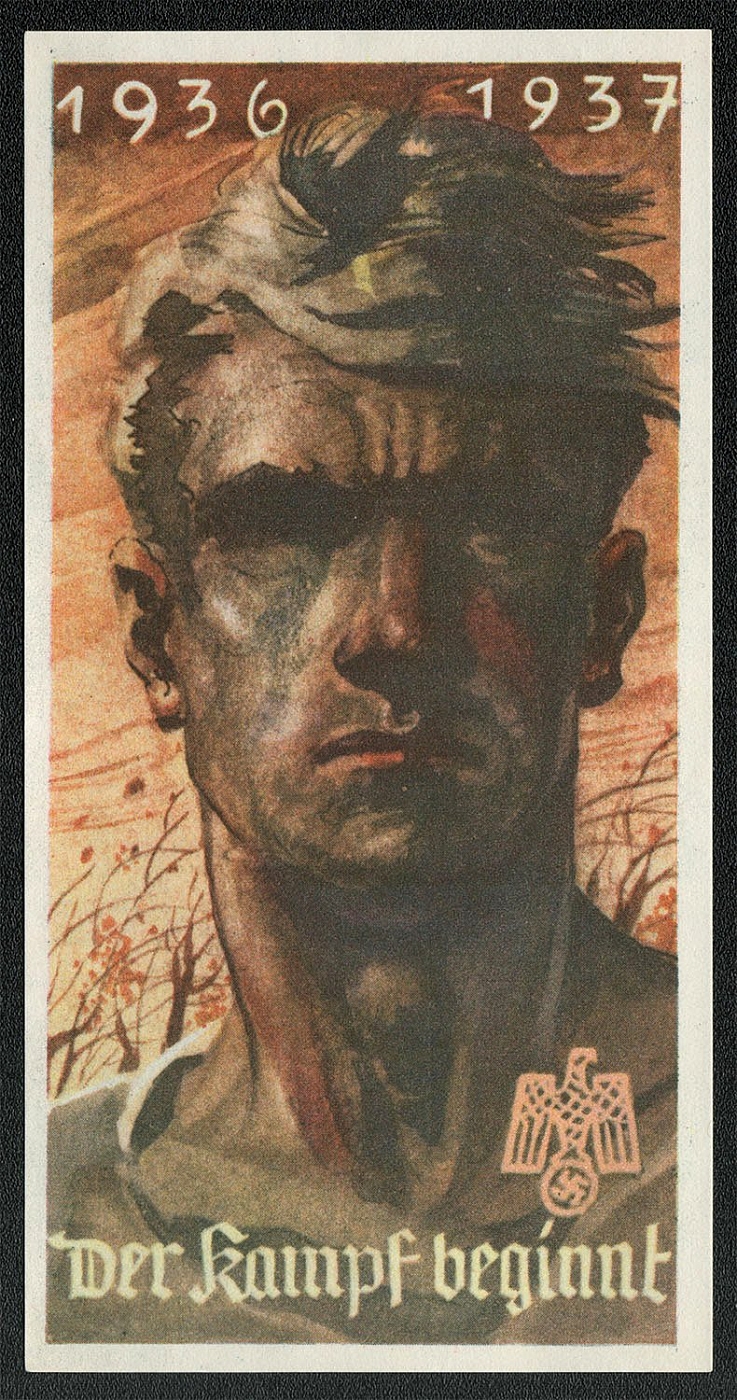
422
-
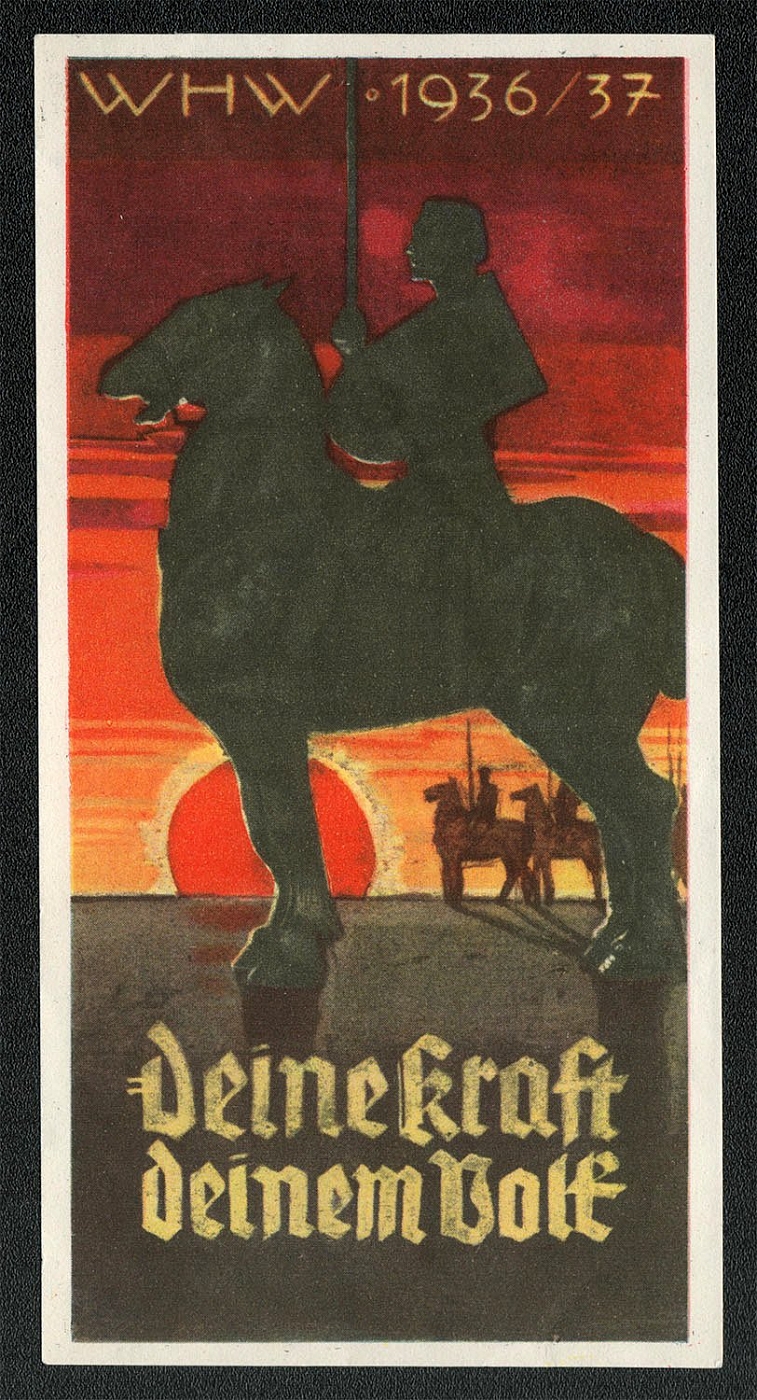
1937 Your Strength - Your People, Propaganda Poster
1937 Your strength, your people. Propaganda Poster
Unsold
423
$140

1937 The Greatest Freedom to the World, Propaganda Poster
1937 The Greatest Freedom to the World. Propaganda Poster
Sold for:
$140
424
$30
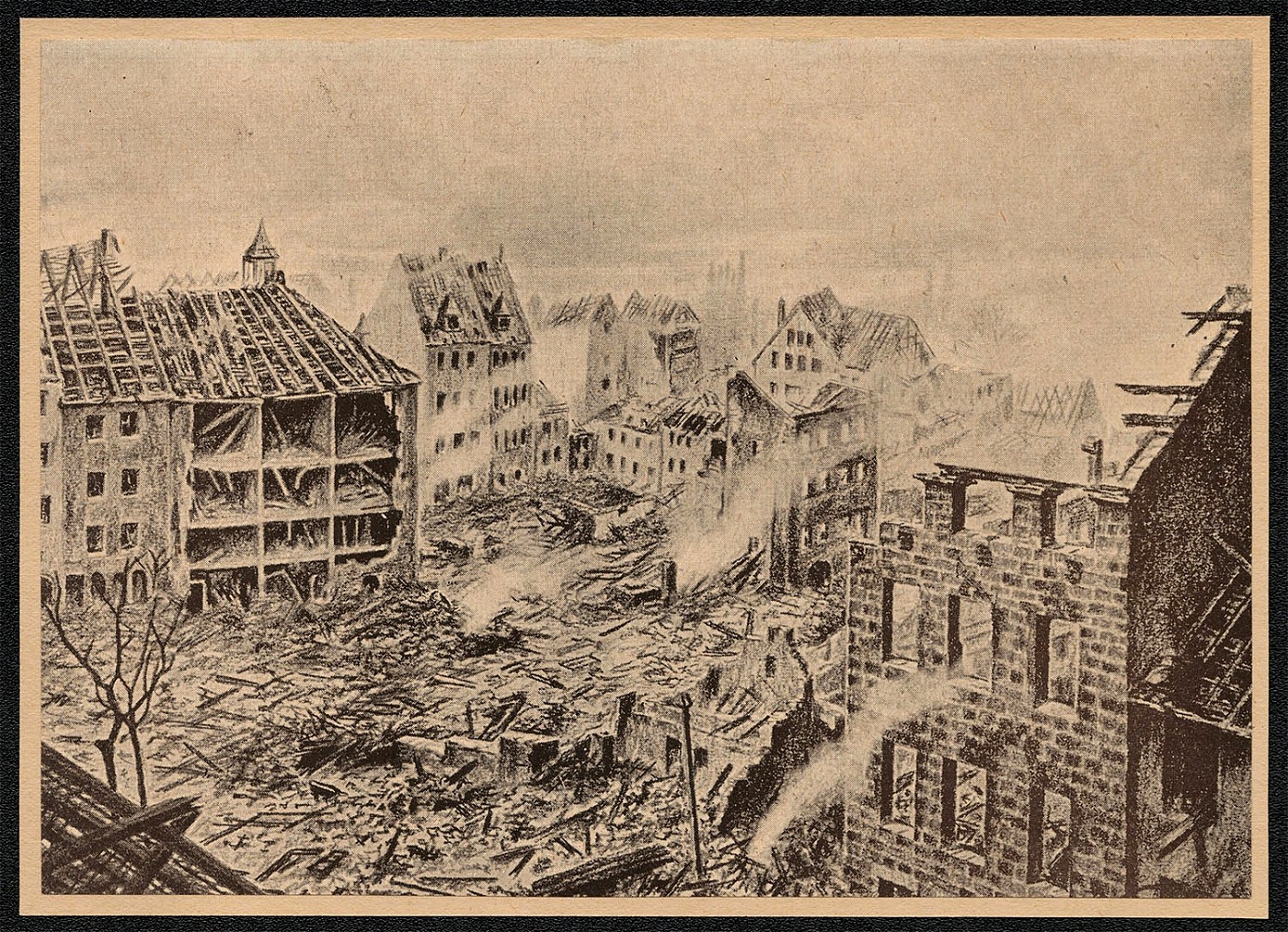
1945 Nuremberg in Ruins View of Old Nuremberg from the Castle, Poster
1945 Nuremberg in Ruins View of Old Nuremberg from the Castle
Sold for:
$30
425
$16
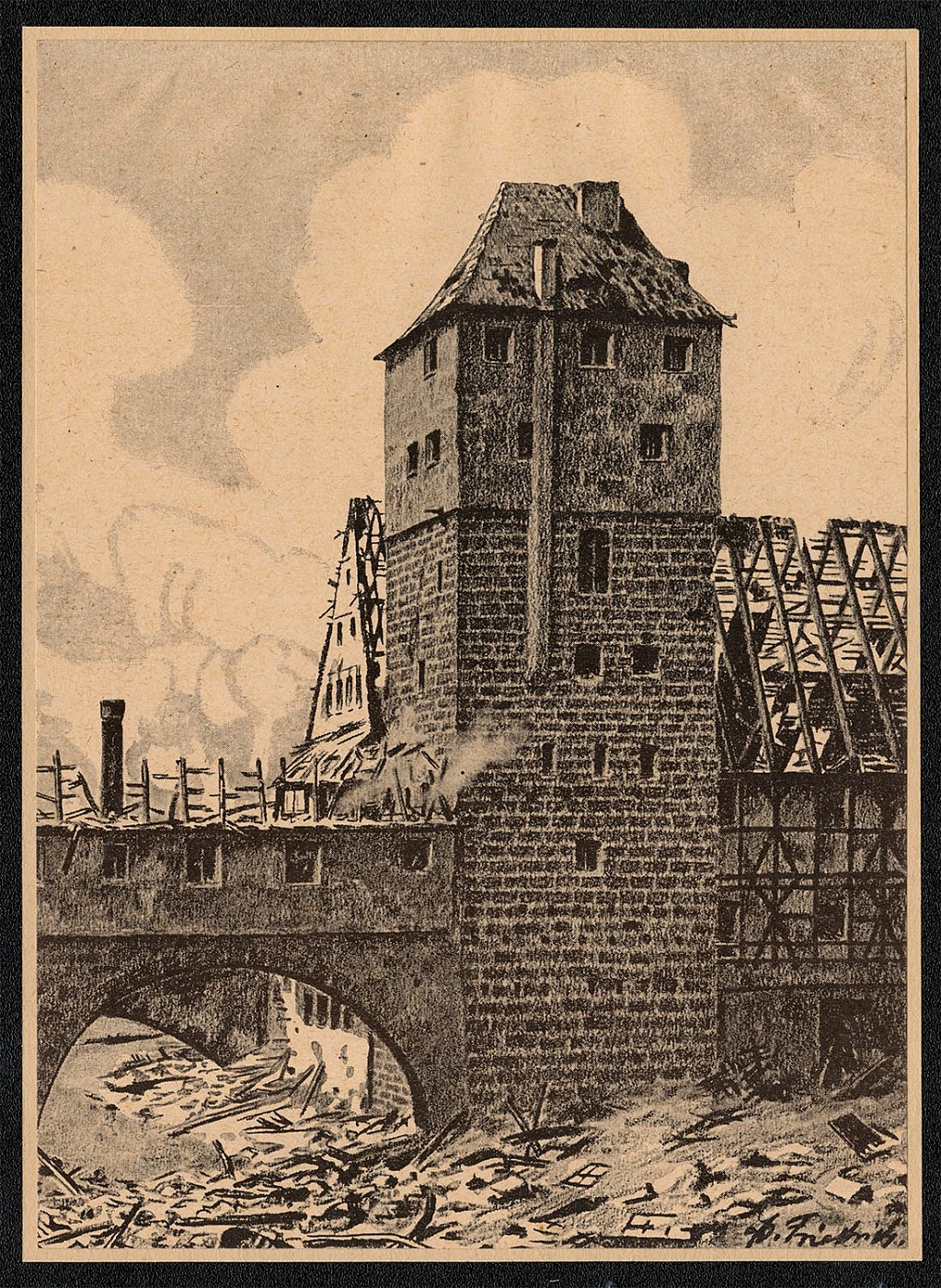
426
-
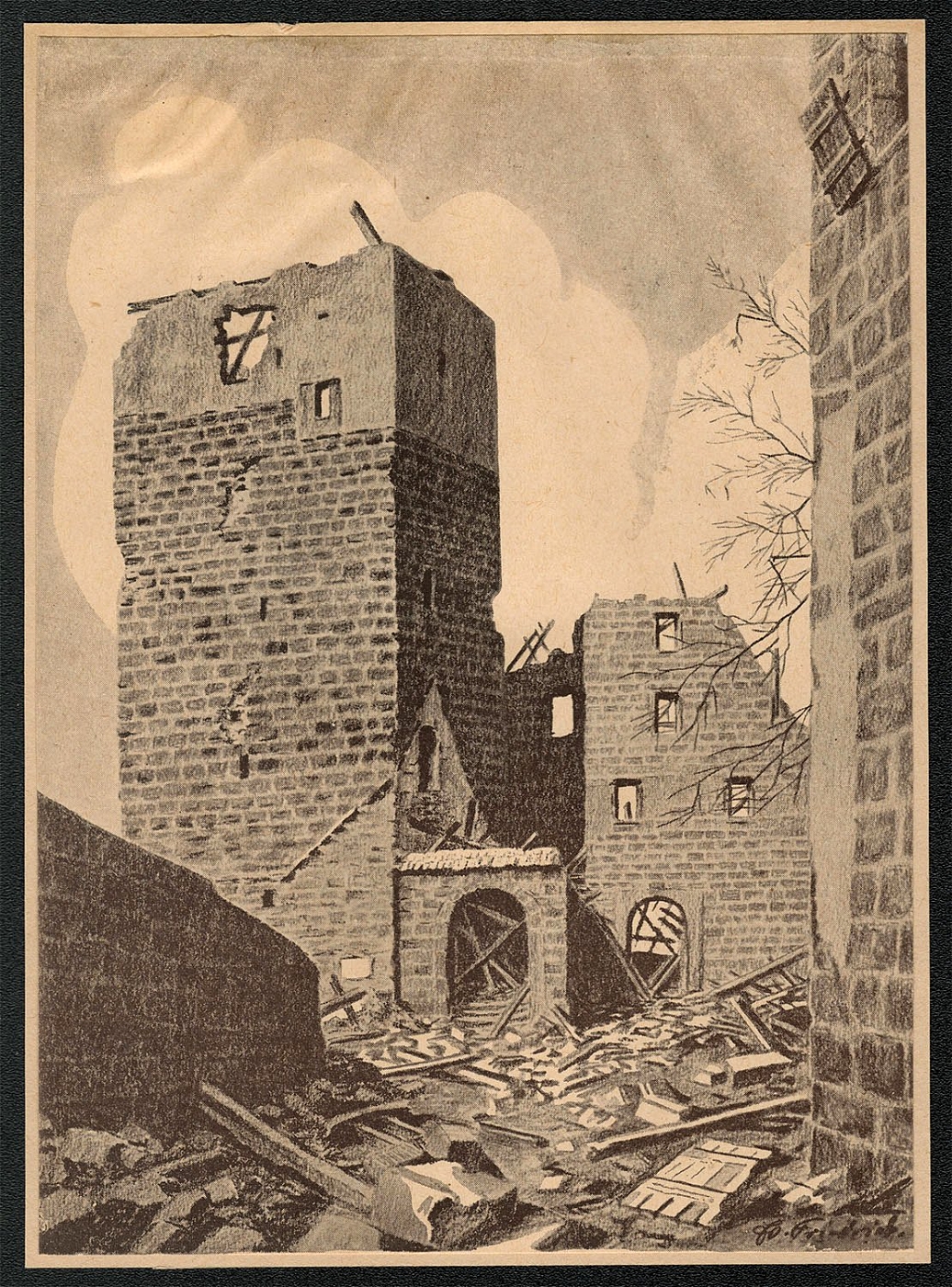
427
-
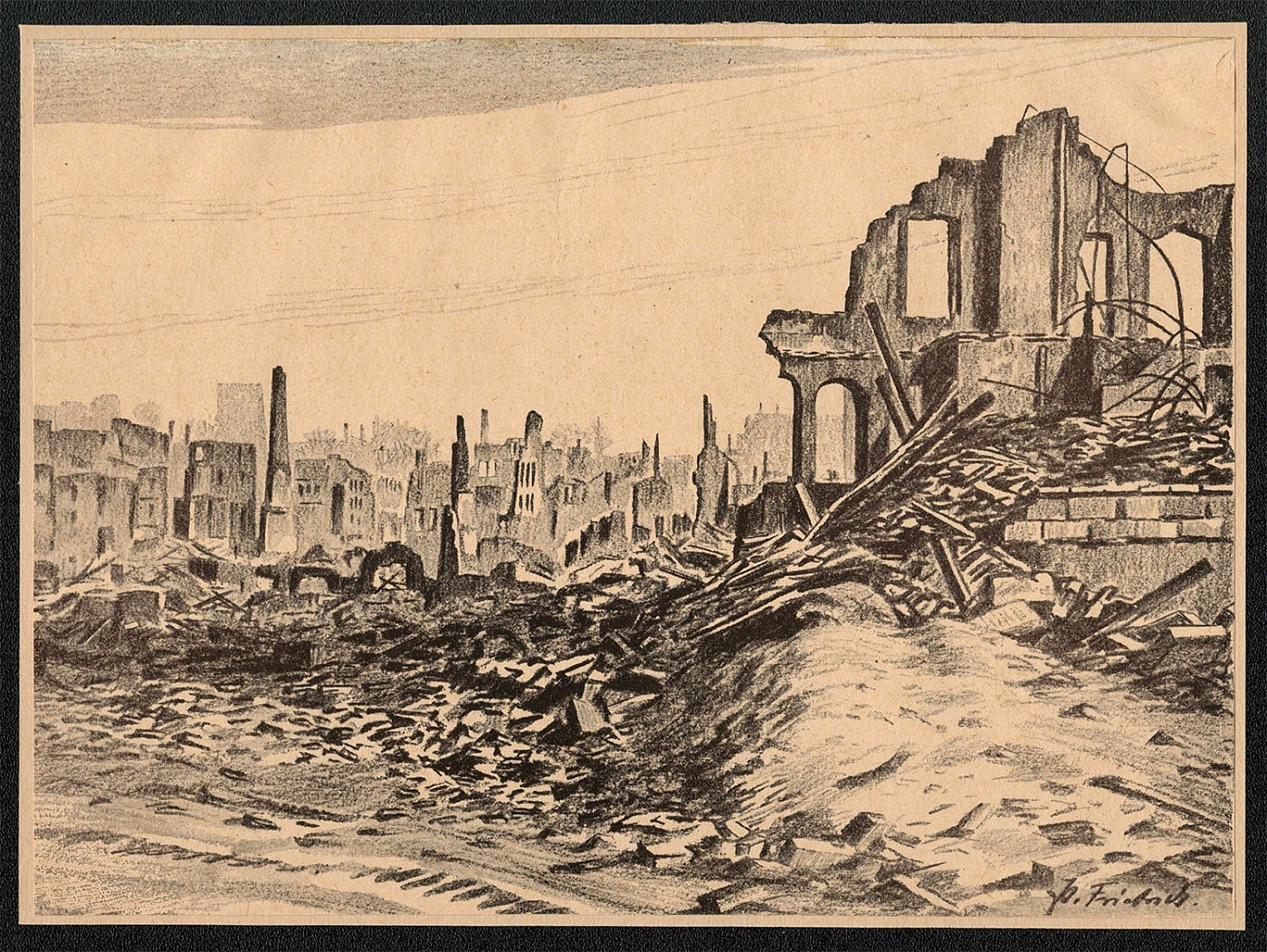
1945 Nuremberg in Ruins View of Old Nuremberg, Poster
1945 Nuremberg in Ruins View of Old Nuremberg
Unsold
428
$18
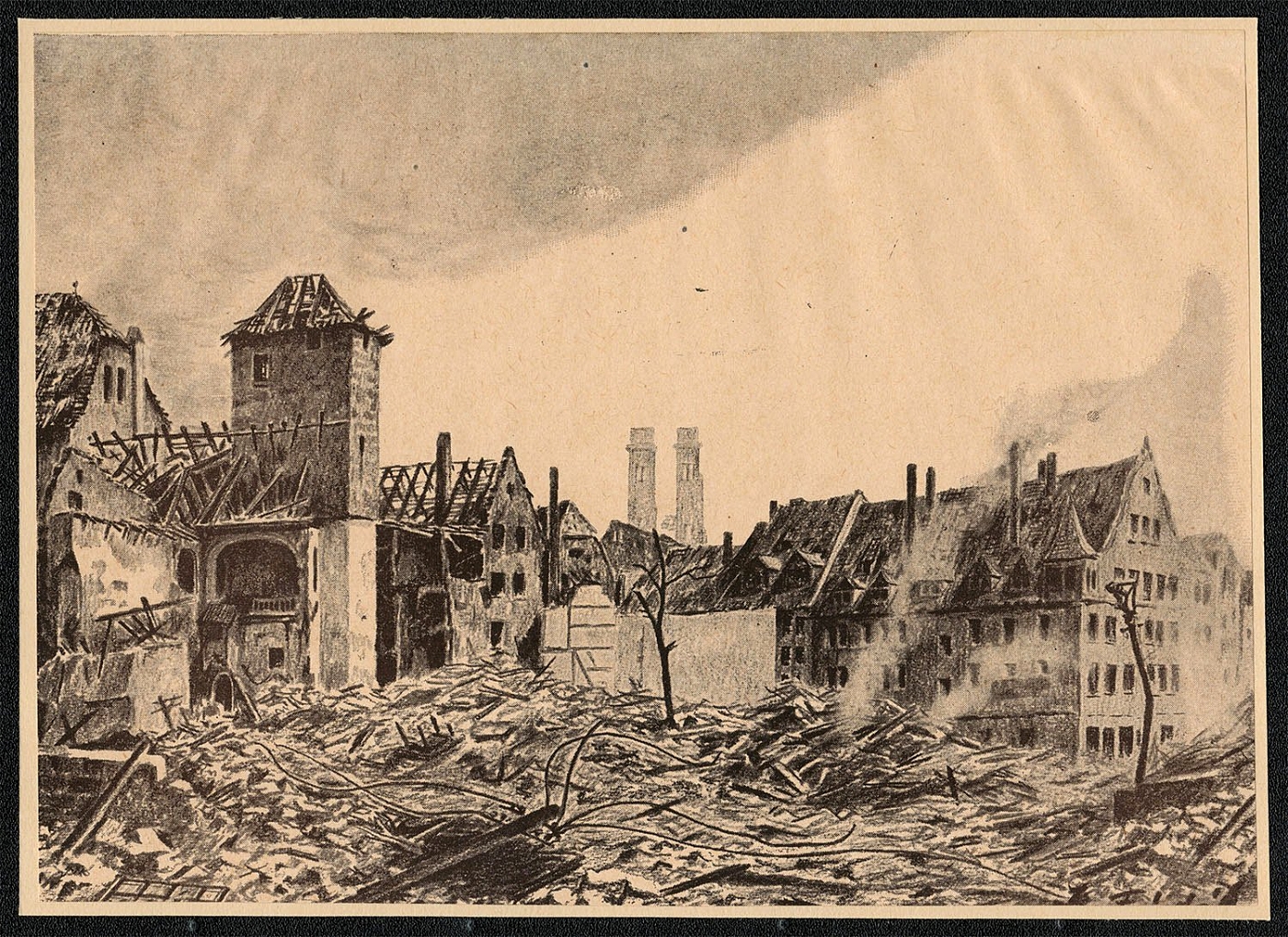
1945 Nuremberg in Ruins Academy of Music, Poster
1945 Nuremberg in Ruins Academy of Music
Sold for:
$18
429
-
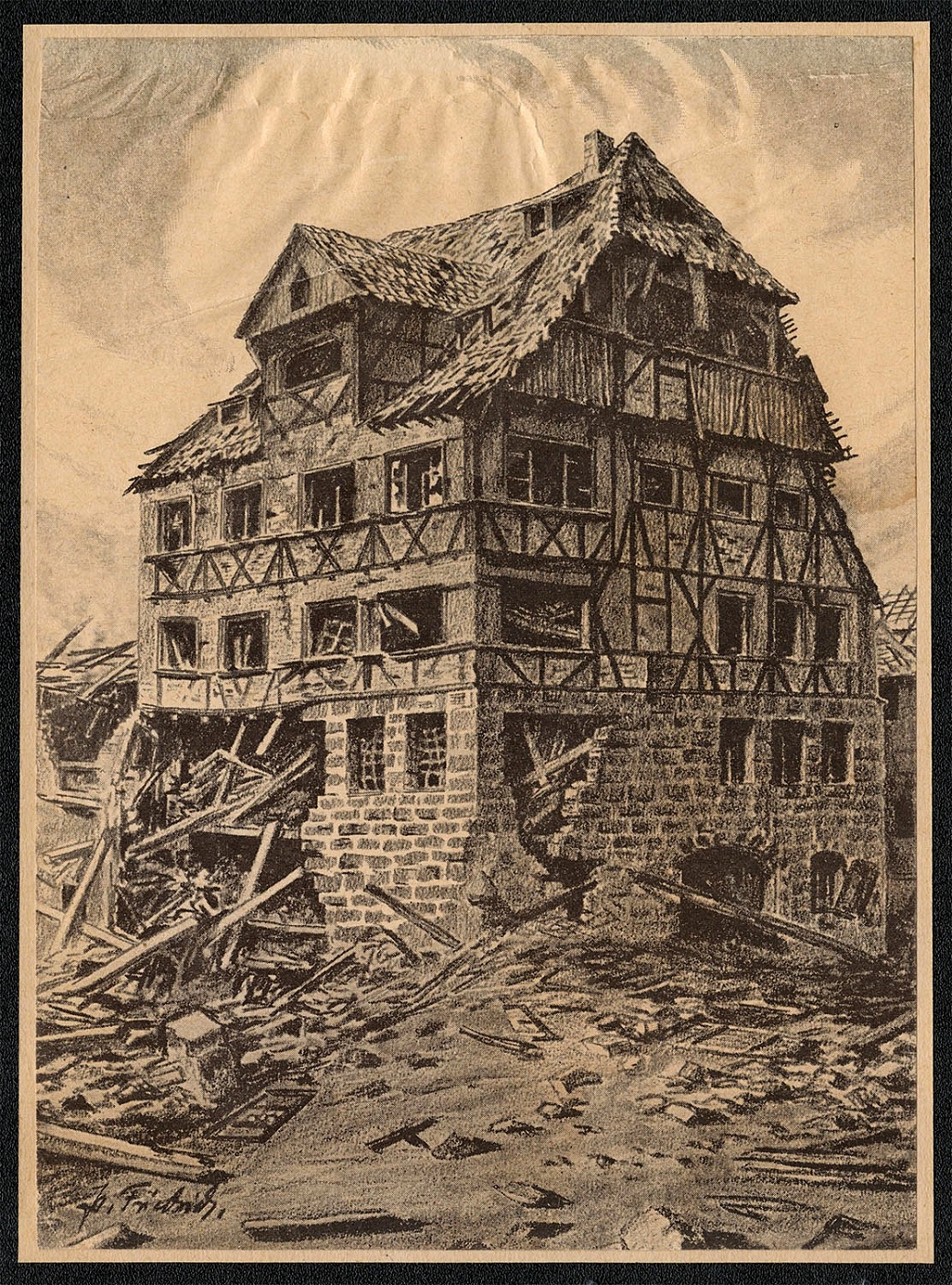
1945 Nuremberg in Ruins Albrecht Durer’s House, Poster
1945 Nuremberg in Ruins Albrecht Durer’s House
Unsold
430
-
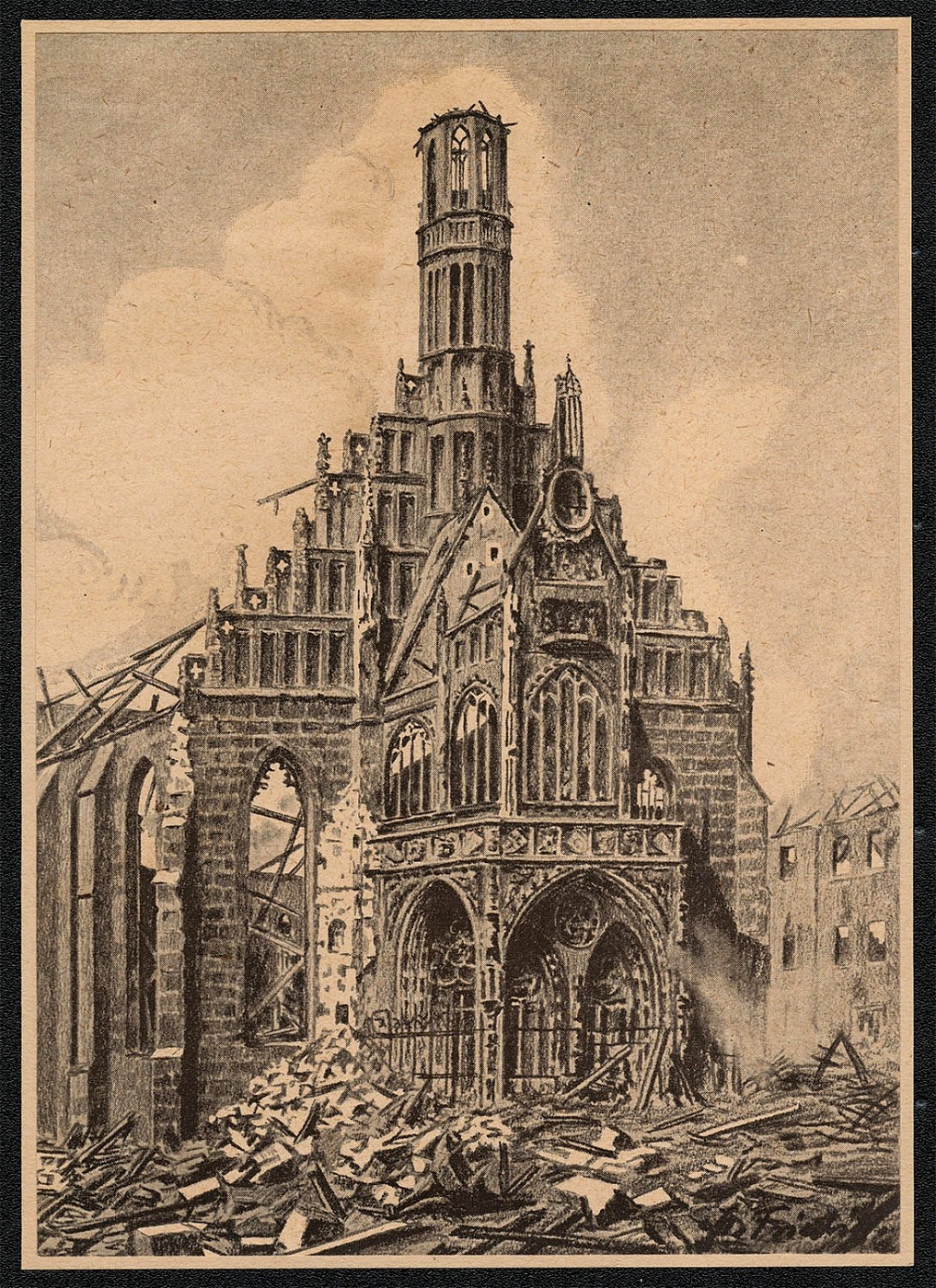
431
-
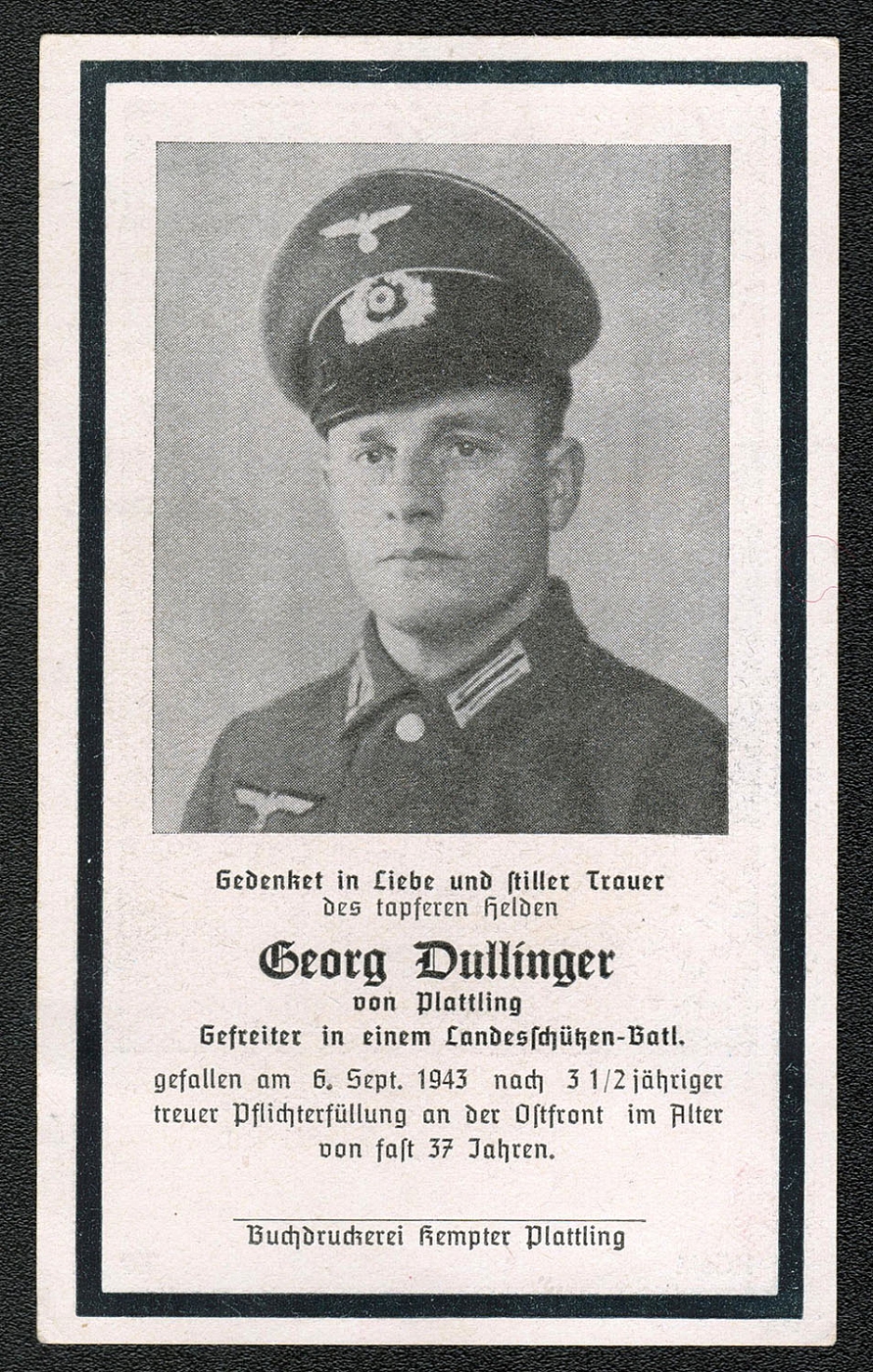
432
$25
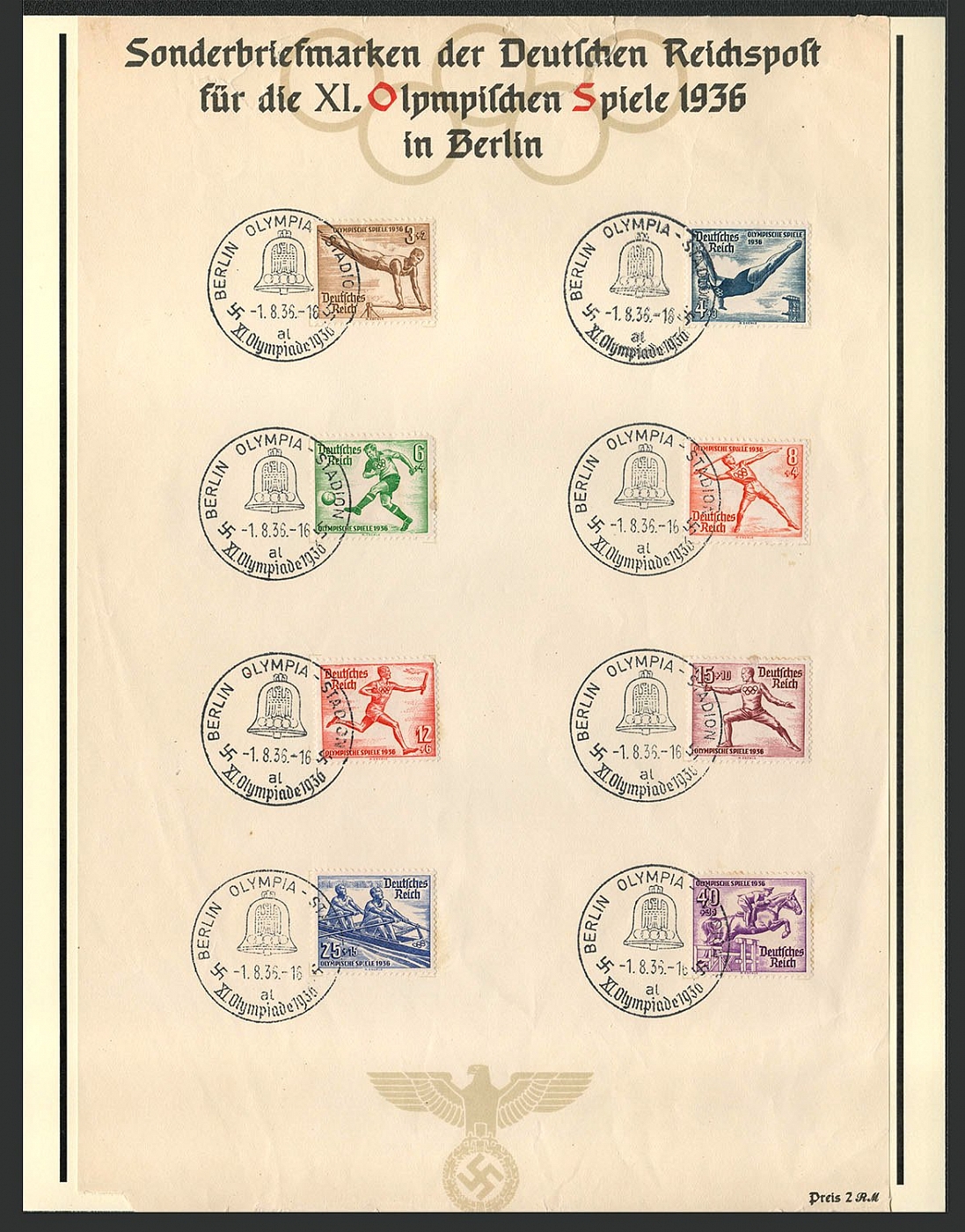
1936 Summer Olympic Games in Berlin Souvenir sheet
1936 Summer Olympic Games in Berlin Souvenir sheet
Sold for:
$25
433
$10
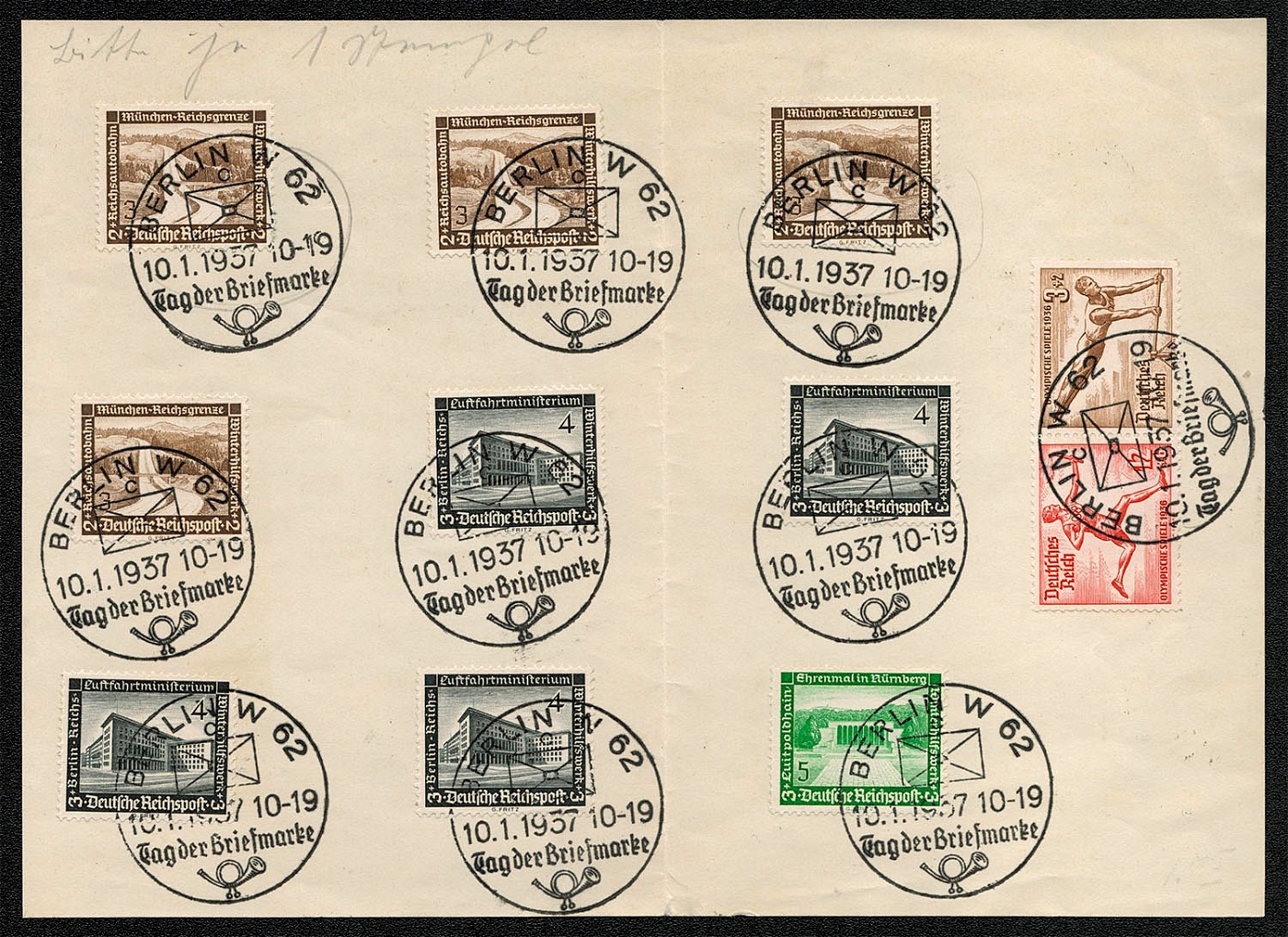
1937 Souvenir sheet with Day of the Postage Stamp special cancellations
Scott Nos. В69 and B74 of the 1936 Olympischen Sommerspielen Issue and B93, B94. and B95 of the 1936 Winterhilfswerk-Moderne Bauten Issue on a folded sheet of plain paper with Day of the Postage Stamp special cancellations from the Berlin W62 post office dated 10 January 1937.
Sold for:
$10
434
$16
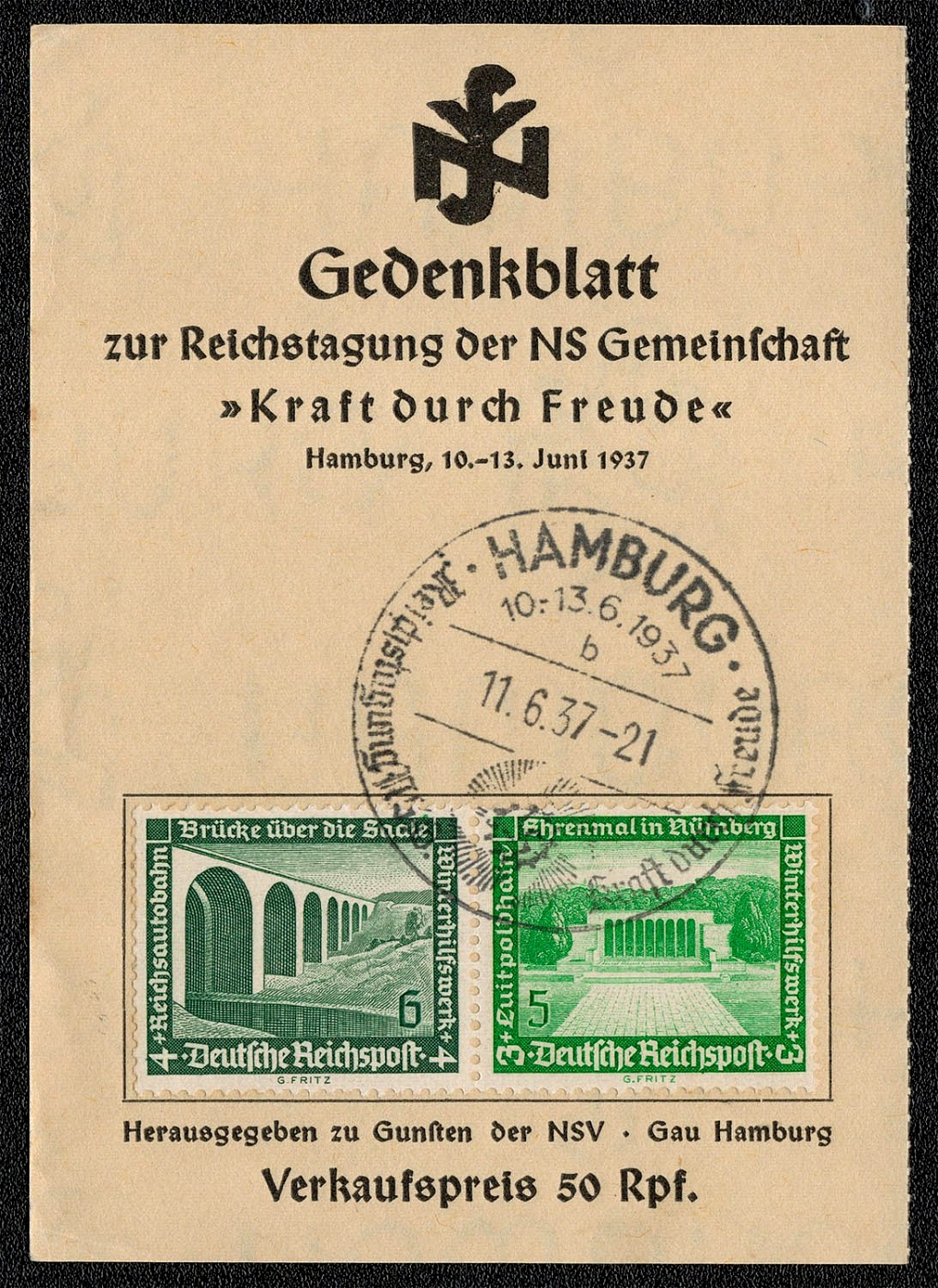
1937 A Souvenir Sheet from the joint National Convention of “Strength through Joy” and the Nazi Administrative District of Hamburg
A Souvenir Sheet from the joint National Convention of “Strength through Joy” and the Nazi Administrative District of Hamburg held at Hamburg 10-13 June 1937. Sales price - 50 Rpf. * * * Franked with Scott B95a and postmarked Hamburg, 11 June 1937. “Strength through Joy” was a Nazi morale and travel organization for civilians.
Sold for:
$16
435
$40
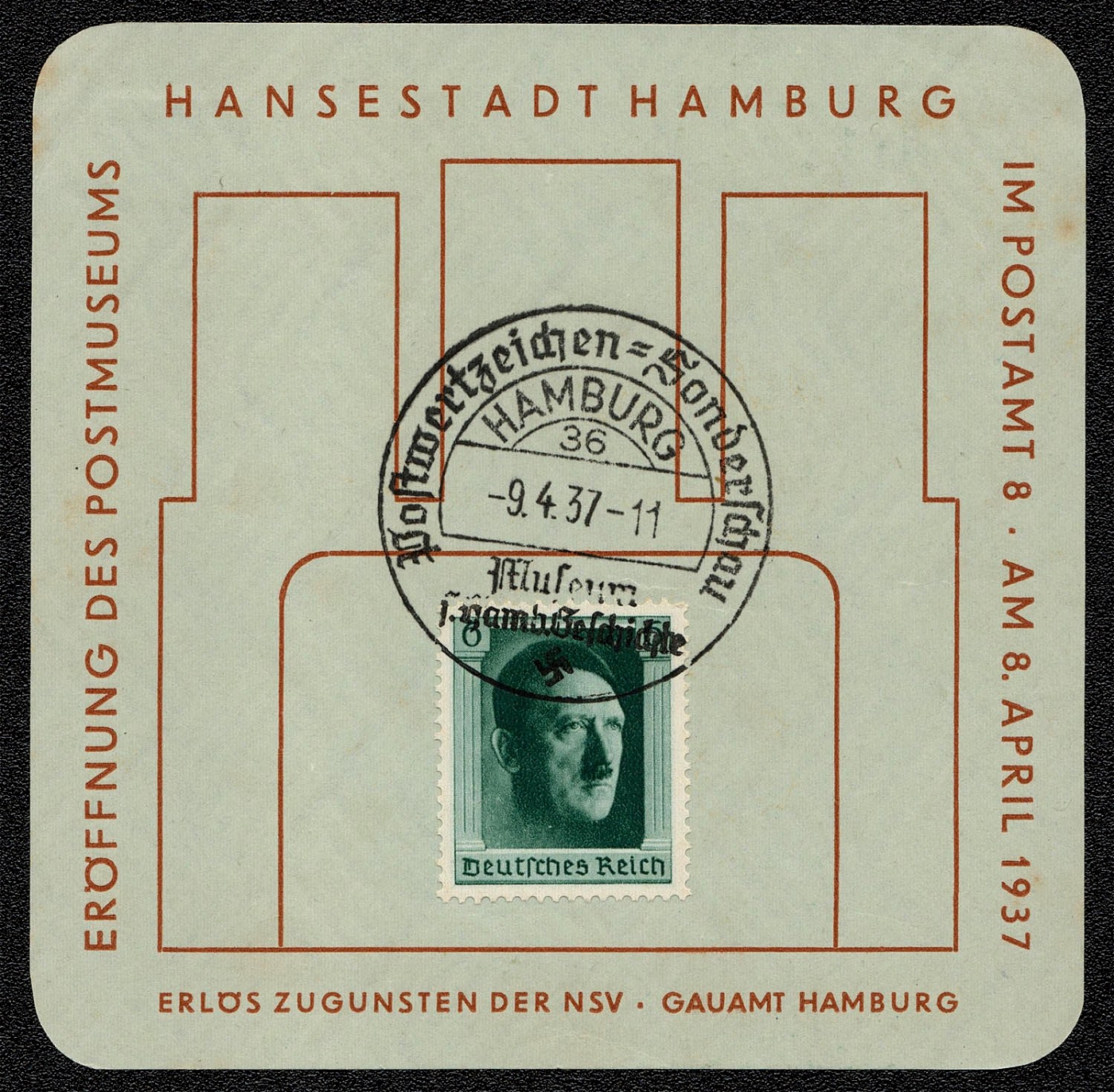
1937 Miniature souvenir sheet sold at the Hamburg Postage Stamp Collectors Show
Miniature souvenir sheet sold at the Hamburg Postage Stamp Collectors Show held the weekend of 8 April 1937. The commemorative cancellation is dated 9 April 1937. EROFFNUNG DES POSTMUSEUMS IM POSTAMT 8 • AM 8. APRIL 1937 HANSESTADT HAMBURG ERLOS ZUGUNSTEN DER NSV • GAUAMT HAMBURG translates as: INAUGURATION OF THE POSTAL MUSEUM IN POST OFFICE 8 ON 8 APRIL 1937 HANSEATIC CITY OF HAMBURG PROCEEDS IN FAVOR OF THE HAMBURG DISTRICT OFFICE OF THE NSV § NSV stands for Nationalsozialistische Volkswohlfahrt (National Socialist Peoples Welfare) which arose from the party’s social welfare initiatives in the period before the Seizure of Power. It was organized regionally, like the party, into Gau, Kreis and local administrations, and then into cells and blocks. It was divided into six departments (organization, financial administration, welfare work and youth care, public health, propaganda and training).
Sold for:
$40
436
$10
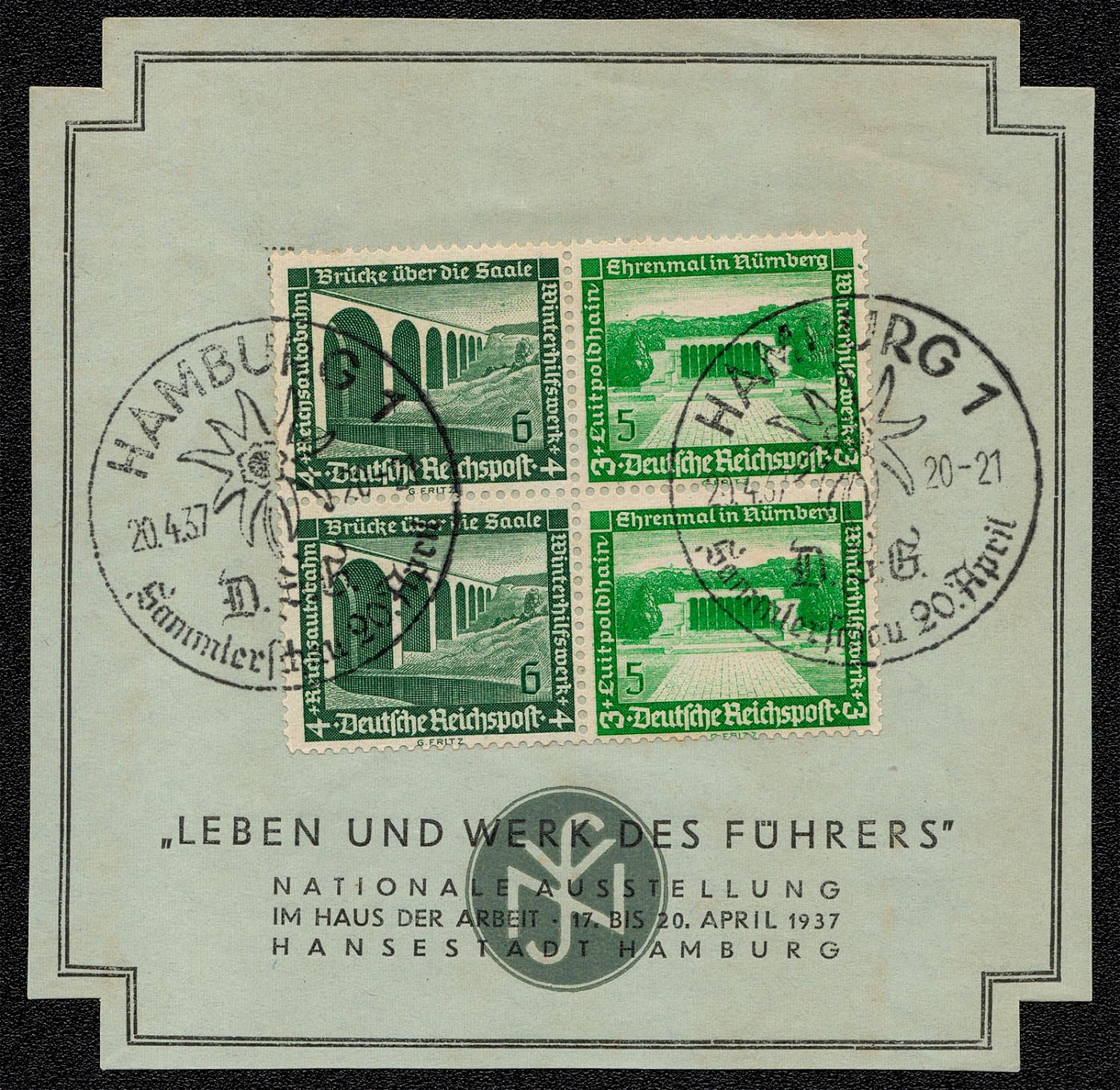
1937 These special souvenir sheets with a block of four “THE LIFE AND WORK OF THE FUHRER”
“THE LIFE AND WORK OF THE FUHRER” NATIONAL EXHIBITION IN THE HOUSE OF LABOR, 17 THROUGH 20 APRIL 1937. HAMBURG, THE HANSEATIC STATE These special souvenir sheets with a block of four taken from current booklet panes were sold to visitors at the KdF National Stamp Collectors Association exhibition on 20 April 1937, Hitler’s birthday and the last day of the show. The 6+4 Rpf value depicts side by side Autobahn bridges over the River Saale between Hirschberg (near Rudolphstein) and Lehesten. It wras opened in September 1936, and was 300 meters long, 32 meters high, 23 meters wide. German military engineers blew it up in April 1945 hoping to delay the advancing American Army. The 5+3 Rpf value depicts the Luitpoldhain Heroes Memorial, Niirnberg which was erected in memory of the fallen of World War I. The cancellation depicts a sprig of edelweiss. § Hamburg, with its long tradition of self-government, had a population of 1,647,000 in the 1930s. It and Bremen are the only German Hanseatic League city-states that still keep something of their medieval independence today.
Sold for:
$10
437
$25
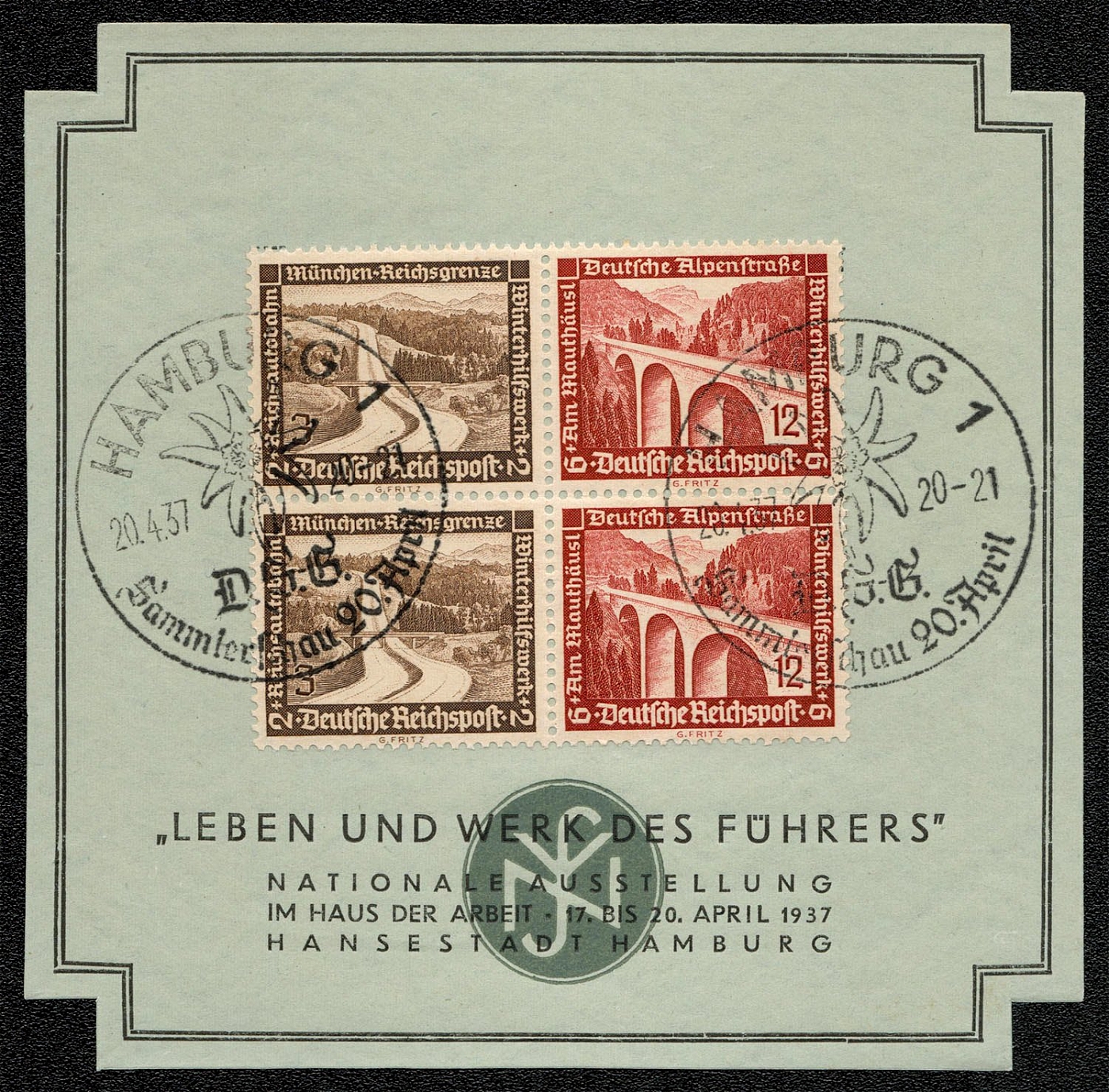
1937 These special souvenir sheets with a block of four “THE LIFE AND WORK OF THE FUHRER” (2)
“THE LIFE AND WORK OF THE FUHRER” NATIONAL EXHIBITION IN THE HOUSE OF LABOR, 17 THROUGH 20 APRIL 1937. HAMBURG, THE HANSEATIC STATE These special souvenir sheets with a block of four taken from current booklet panes were sold to visitors at the KdF National Stamp Collectors Association exhibition on 20 April 1937, Hitler’s birthday and the last day of the show. The 3+2 Rpf value depicts the autobahn between Miinchen and Reichenhall to the Austrian frontier. The autobahns played a major part in the recovery of the German economy with unemployment going from seven million in 1933 to full employment by 1938. With a view for future military needs, they led to the Austrian, Czech, Polish and Belgium frontiers and were massively constructed, Hitler said, “To withstand bombing and straffing later.” The 12+6 Rpf value depicts the “Alpine Road” near the Mauthausl picturesquely situated above the deep gorge of the Weissbach near Berchtesgaden. The cancellation depicts a sprig of edelweiss. The Hanseatic League was a protective and commercial association of free towns in northern Germany and neighboring areas, formally organized by Hamburg and Lubeck in 1358. The League dissolved in the 17lh century.
Sold for:
$25
438
$25

1938 Berlin International Motor Show
The 1938 Berlin International Motor Show 18 February —6 March 1938 Printed by W. Langhcld of Berlin. Price: 50 Rpf. The sheet was sold with three different combinations of stamps, cancelled by the special handstamp. This example carries the 3+ 2, 4+ 3, 5+ 3, and 6+ 4 Rpf. values of the 1937 Winter Relief Fund set.
Sold for:
$25
439
$50
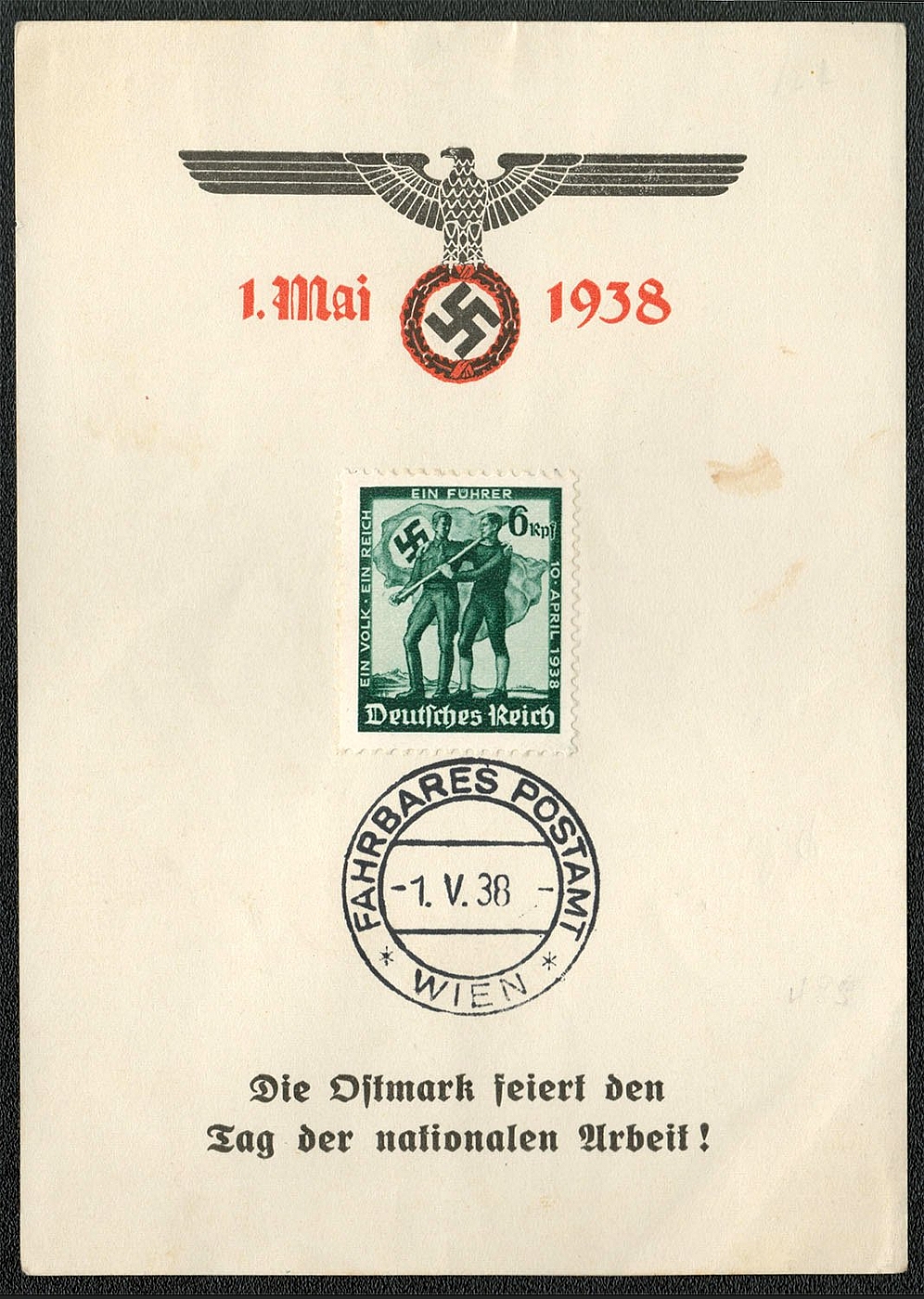
1938 Souvenir Sheet issued for the Day of National Labor, franked with Scott 485
Souvenir Sheet issued for the Day of National Labor, franked with Scott 485 and cancelled: Wien, 1 May 1938 FAHRBARES POSTAMT (Travelling Post Office) The inscription translates: Ostmark celebrates the Day of National Labor (Ostmark was the new term for Austria.)
Sold for:
$50
440
$35
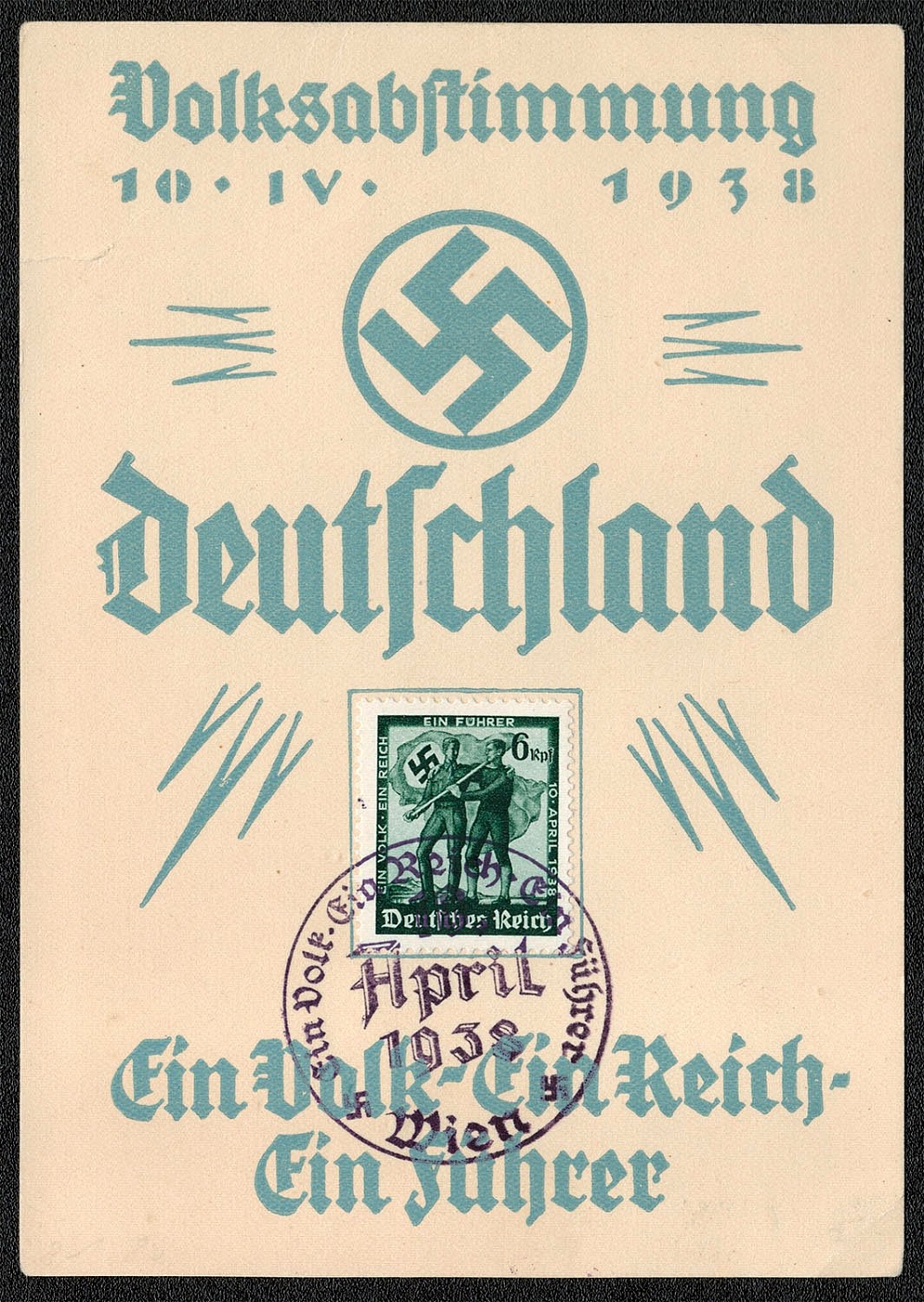
1938 Referendum in Austria Souvenir card franked with Scott 485, postmarked in Wien
1938 Referendum in Austria Souvenir card franked with Scott 485, postmarked in Wien
Sold for:
$35
441
$5
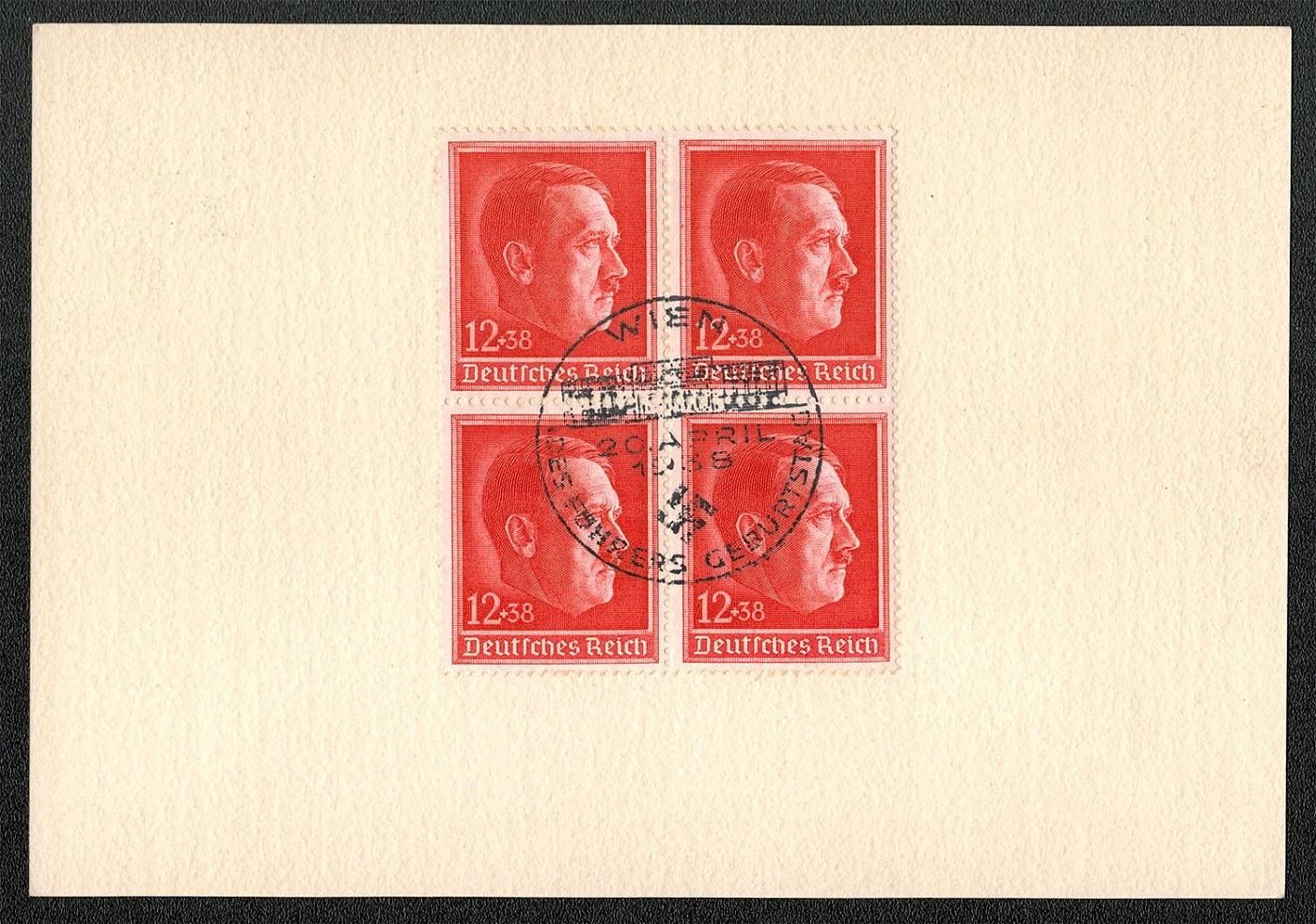
1938 The Wien postmark on the souvenir card depicts the Heroes Memorial
This stamp was issued for Hitler’s forty-ninth birthday. The Wien postmark on the souvenir card depicts the Heroes Memorial and was only used on 20 April 1938.
Sold for:
$5
442
$30
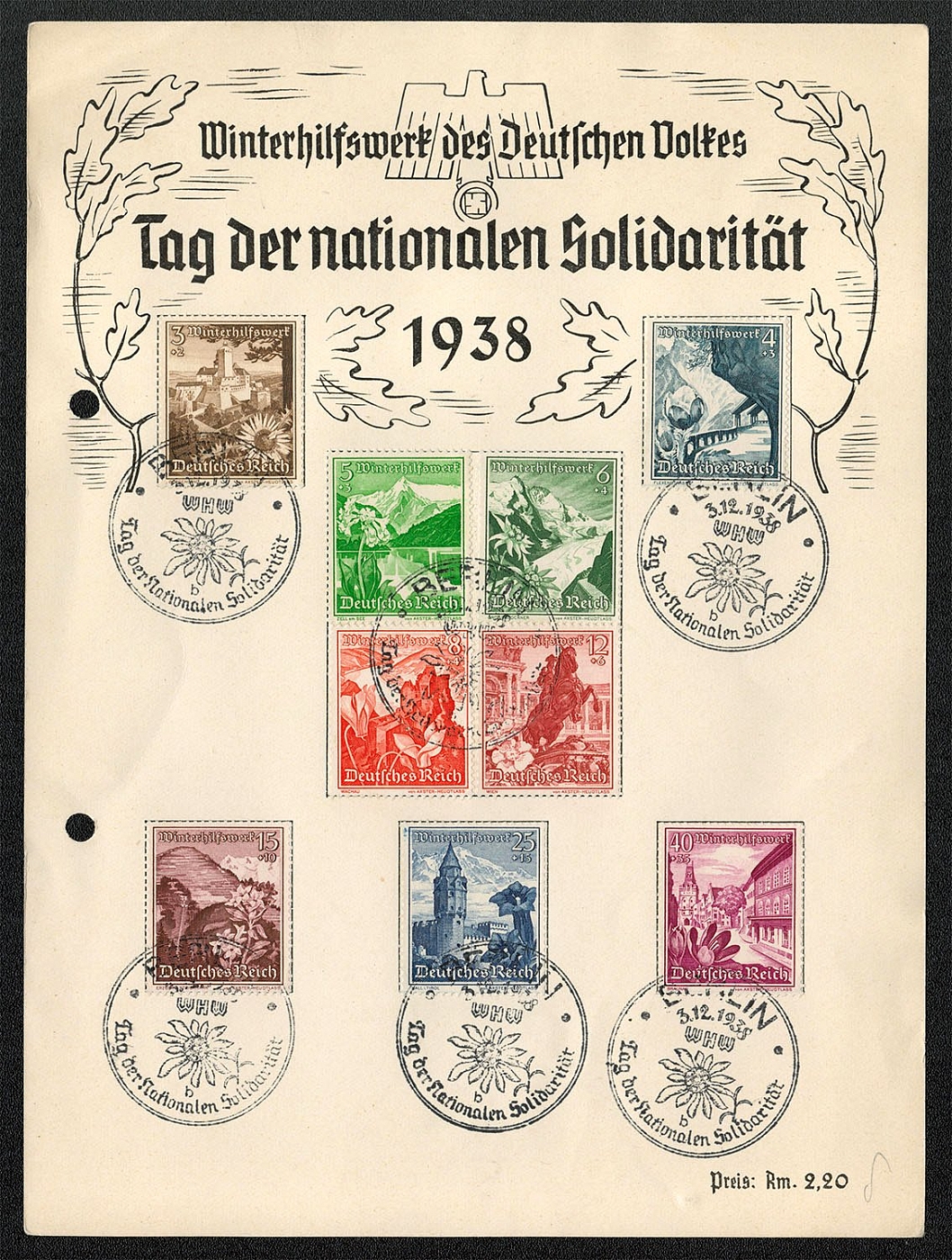
1938 Souvenir Sheet 38/25 franked with the Winter Relief Fund set of November 1938
Souvenir Sheet 38/25 franked with the Winter Relief Fund set of November 1938 cancelled by handstamp in Berlin on 3 December 1938 to mark the Day of National Solidarity. The cancel depicts the edelweiss flower. The name of the printer and sponsor (if any) is unknown, but the sheet was sold by Walther Gocks of Berlin for 2.20 Rm.
Sold for:
$30
443
$40
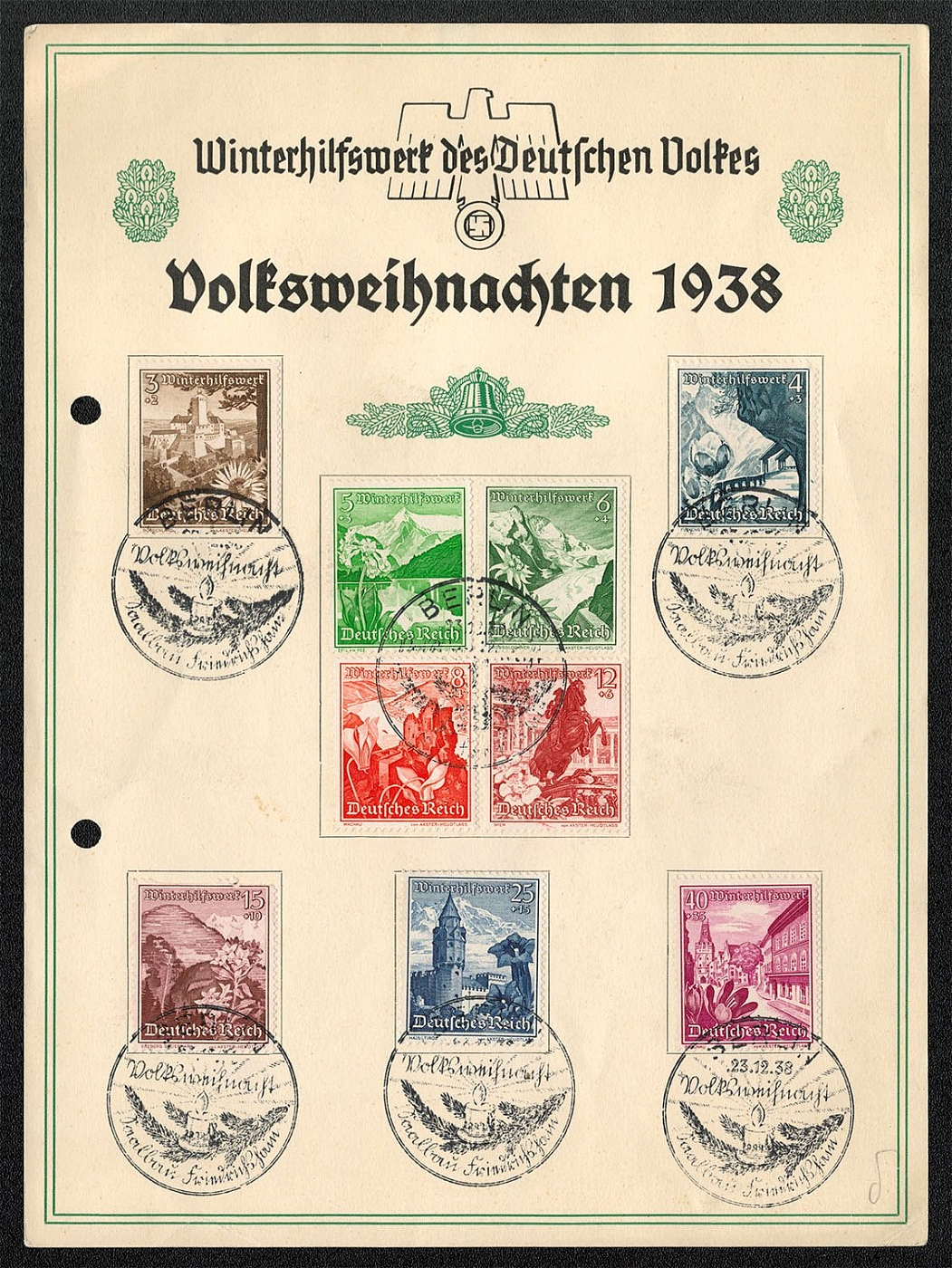
1938 Souvenir Sheet 38/26 franked with the Winter Relief Fund set of November 1938 cancelled by handstamp in Berlin
Souvenir Sheet 38/26 franked with the Winter Relief Fund set of November 1938 cancelled by handstamp in Berlin on 23 December 1938 to mark “Volks” Christmas. The cancel depicts a Yuletide candle. The name of the printer is unknown, but the sheet was sponsored by the Winter Relief Organization in Berlin.
Sold for:
$40
444
$25
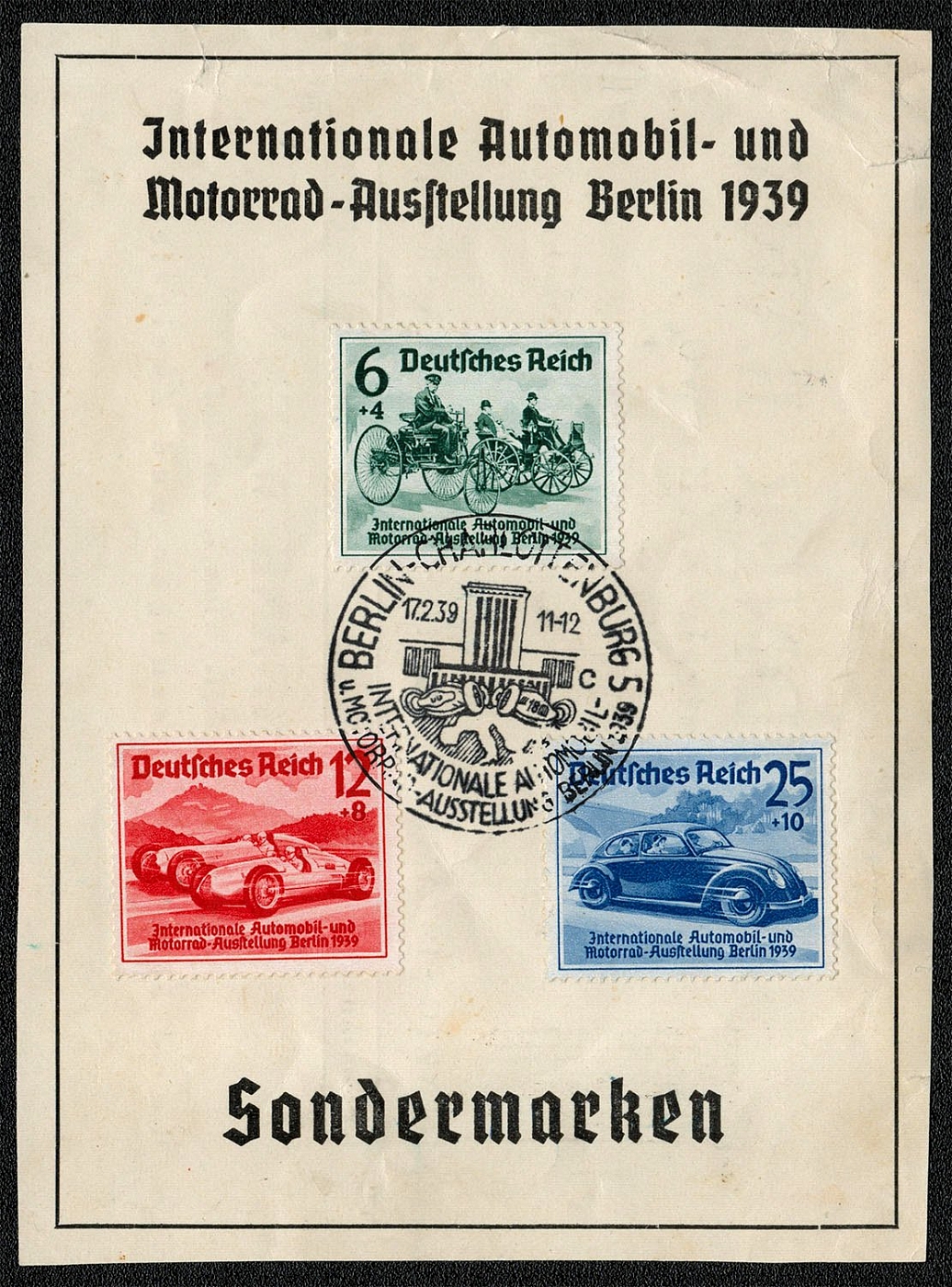
1939 The International Automobile and Motorcycle Exhibition souvenir card
The Dresdner Bank of central Berlin boasted approximately 350 branch offices and deposit boxes throughout Germany, and international branches in Danzig, Istanbul, Izmir, Alexandria, and Cairo, as well as cooperative divisions in Berlin and Frankfurt. The stamps fr om this issue were sold only at the show until its closing date, 5 March 1939, after which they were available at all German post offices. A maximum of two sets were available against the entrance ticket to the motor show, at a price of 1 Reichmark per set. The souvenir cards were supplied at the show, wh ere the special postmark could be obtained. Car shows had been celebrated since 1933, and each year a special postmark was issued. The 1939 show was the last international motor show to be held in Germany for some years, but they resumed after the war.
Sold for:
$25
445
$30
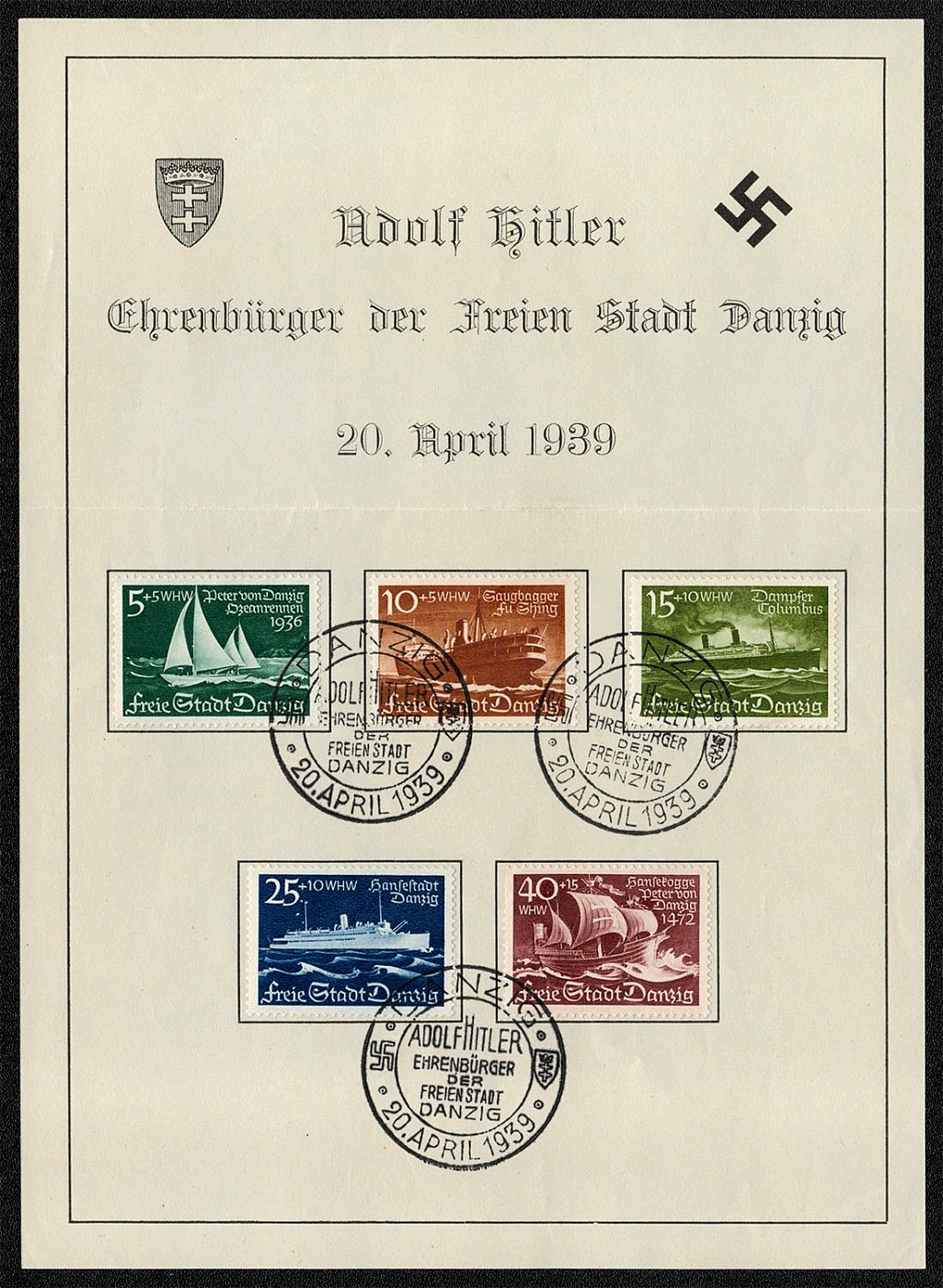
1939 Adolf Hitler Honorary Citizen of the Free City of Gdansk (Danzig)
1939 Adolf Hitler Honorary Citizen of the Free City of Gdansk (Danzig)
Sold for:
$30
446
$20
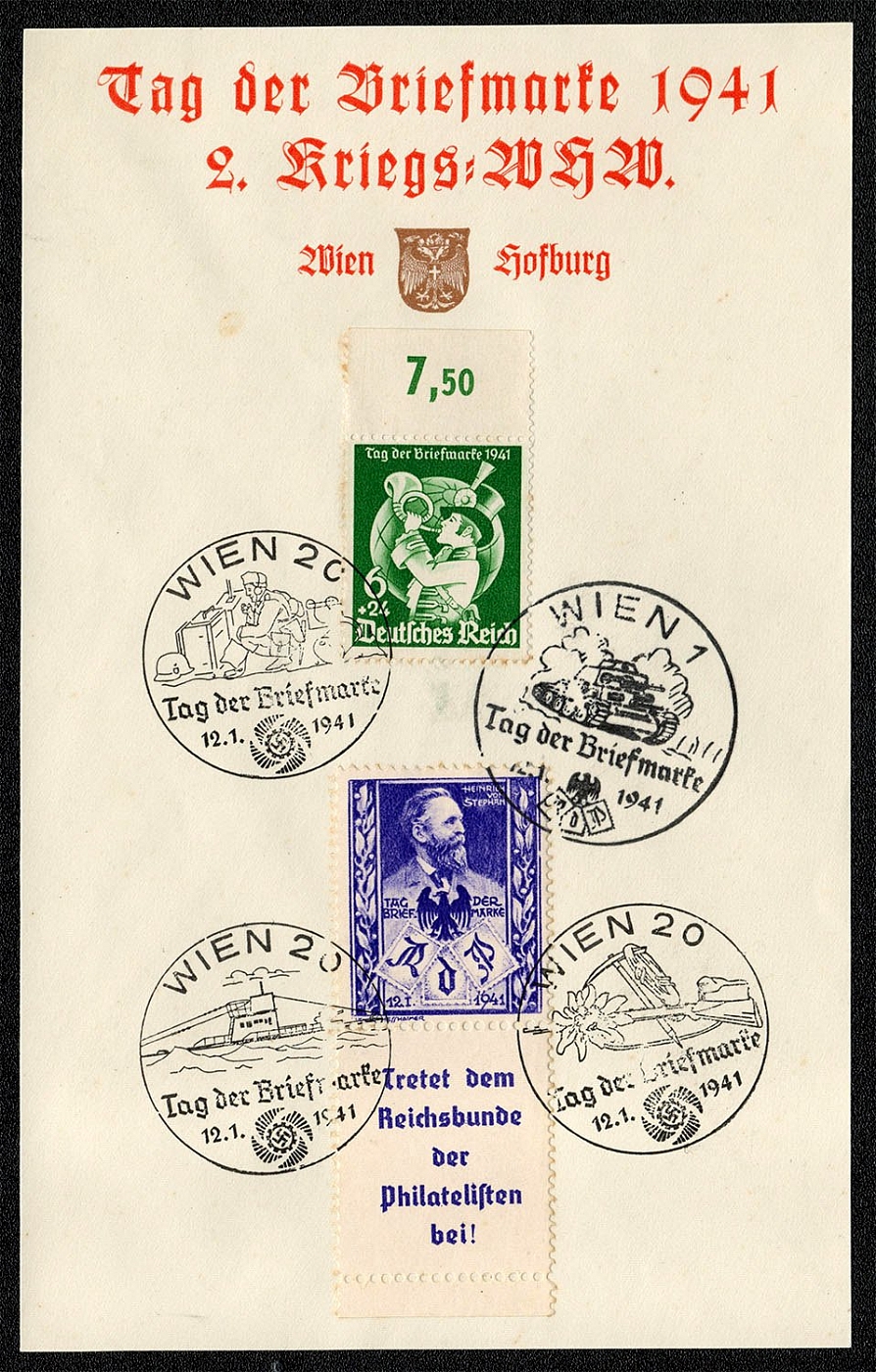
1941 Souvenir card from the 1941 Day of the Stamp and the Second Wartime Winter Help
Souvenir card from the 1941 Day of the Stamp and the Second Wartime Winter Help. Franked with Sc. В188 and a Klebezettel (gummed label) publicizing the Reichsbund der Philatelisten. The cancellations include depictions of the Signal Corps, a Panzer, a submarine and an edelweiss and rifle, and are from the set of ten war motif designs used in a number of towns between 10 and 14 January 1941. Wien (Hofburg) 12 January 1941.
Sold for:
$20
447
$40
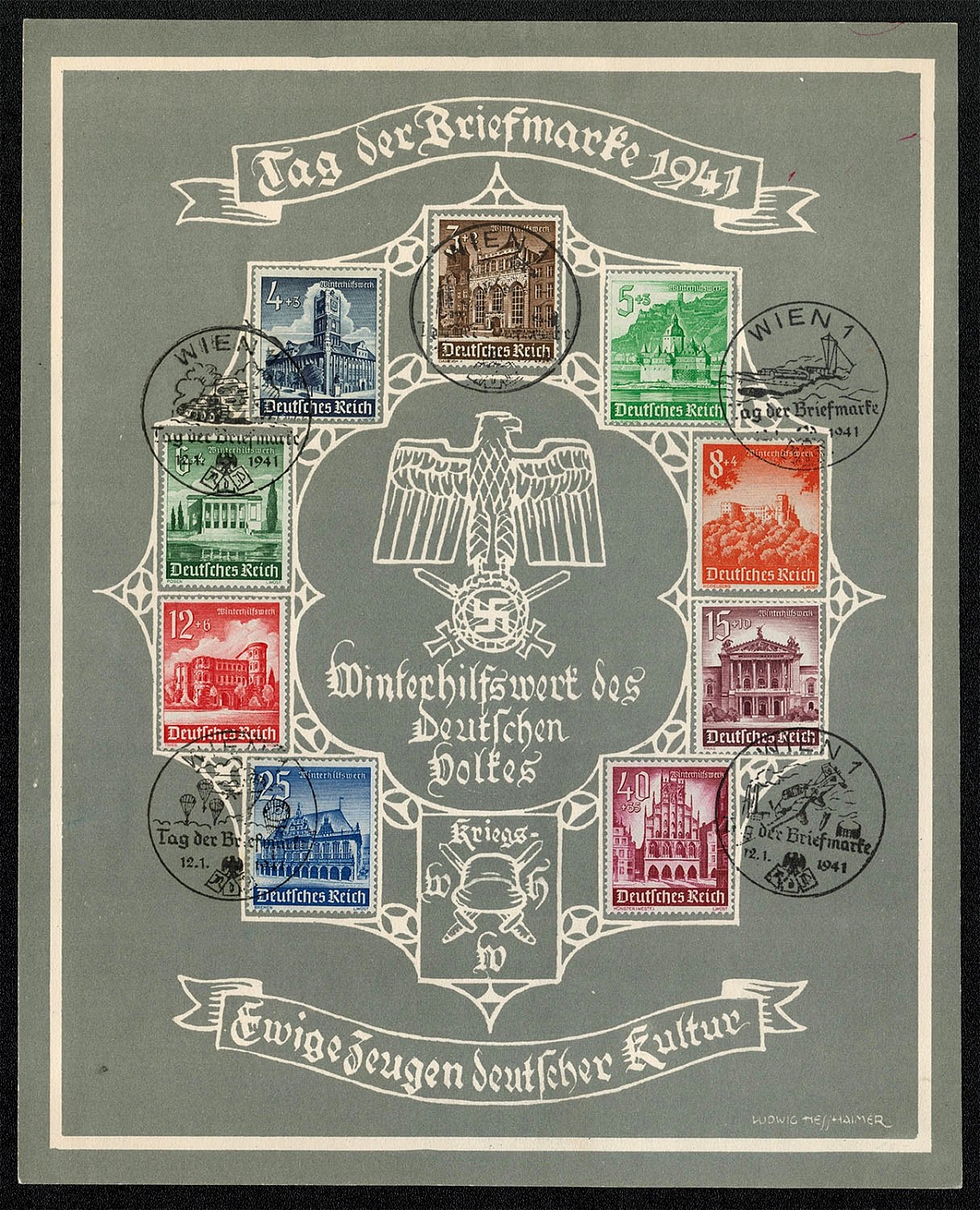
1941 Souvenir card Day of the Stamp Special postmark Wien
1941 Souvenir card Day of the Stamp Special postmark Wien
Sold for:
$40
448
$55
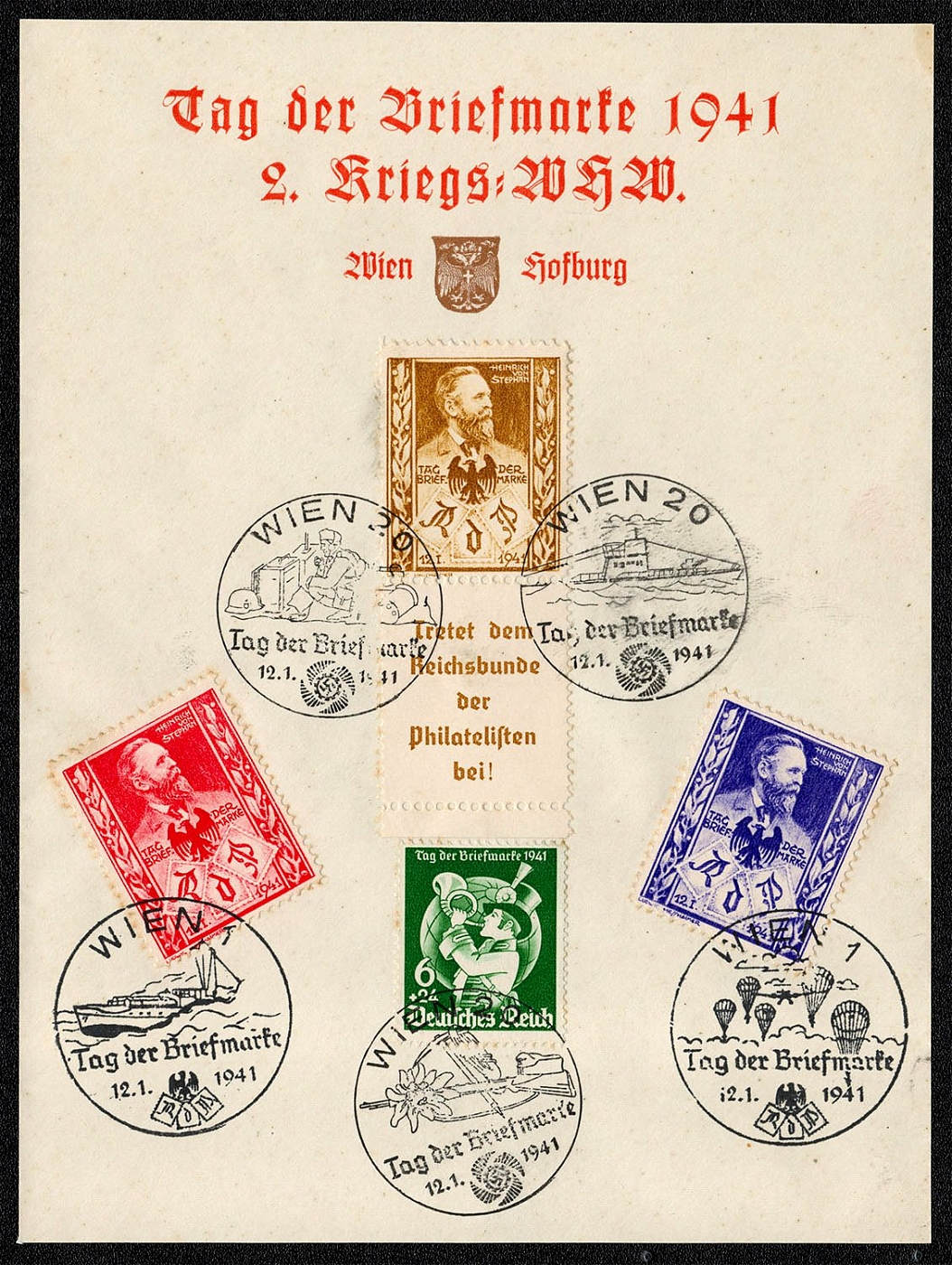
1941 Souvenir card from the 1941 Day of the Stamp and the Second Wartime Winter Help. Franked with Sc. В188 and 3 gummed label
Souvenir card from the 1941 Day of the Stamp and the Second Wartime Winter Help. Franked with Sc. В188 and 3 gummed labels (Klebezettel) publicizing the Reichsbund der PhilateHsten. The cancellations include depictions of the Signal Corps, a U-boat, an E-boat, Parachutists, and an edelweiss and rifle, and are from the set of ten war motif designs used in a number of towns between 10 and 14 January 1941.
Sold for:
$55
449
$20
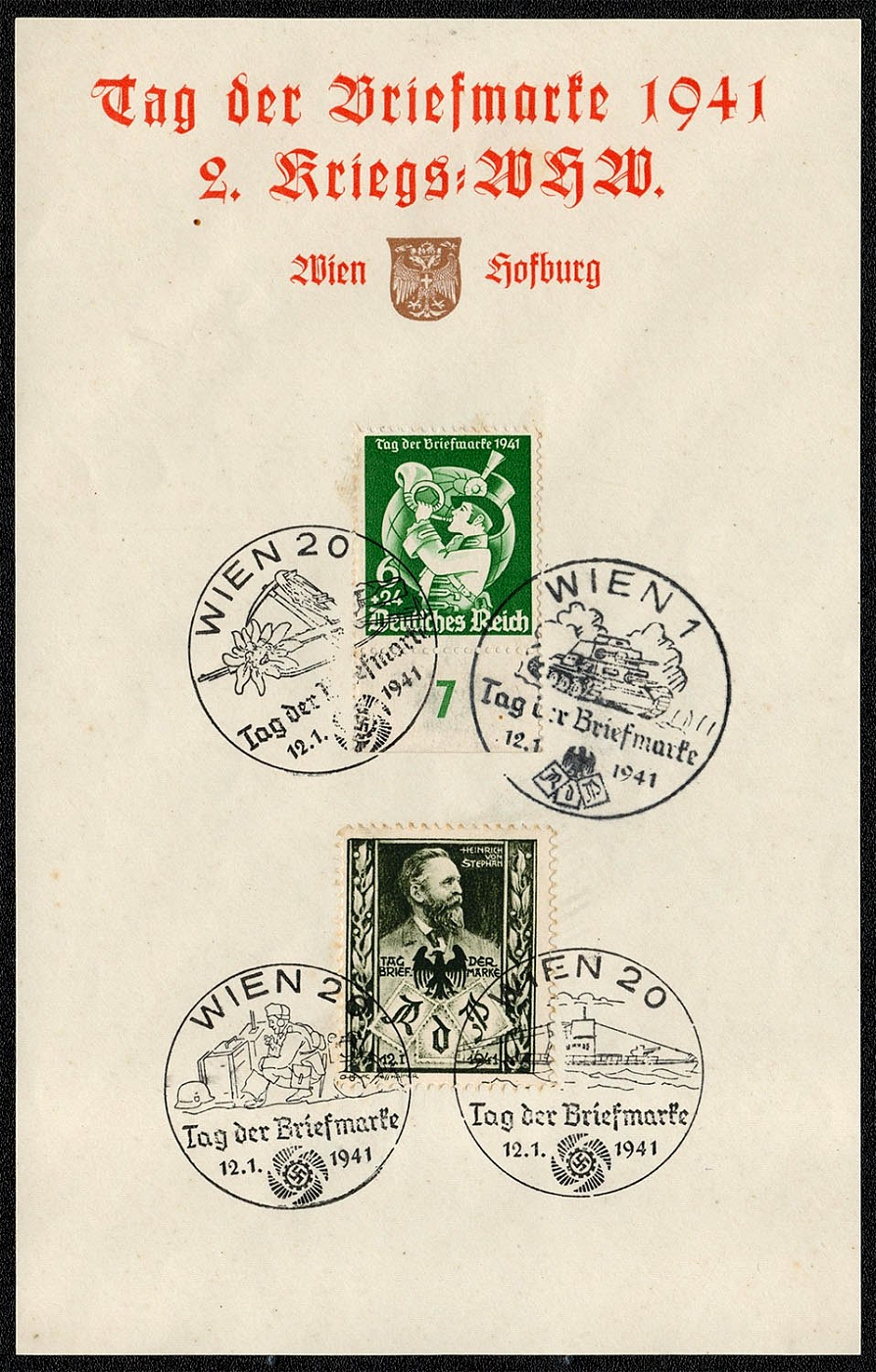
1941 Souvenir card from the 1941 Day of the Stamp and the Second Wartime Winter Help. Franked with Sc. В188 and gummed label
Souvenir card from the 1941 Day of the Stamp and the Second Wartime Winter Help. Franked with Sc. В188 and a Klebezettel (gummed label) publicizing the Reichsbund der Philatelisten. The cancellations include depictions of the Signal Corps, a Panzer, a submarine and an edelweiss and rifle, and are from the set of ten war motif designs used in a number of towns between 10 and 14 January 1941. Wien (Hofburg) 12 January 1941.
Sold for:
$20
450
$45
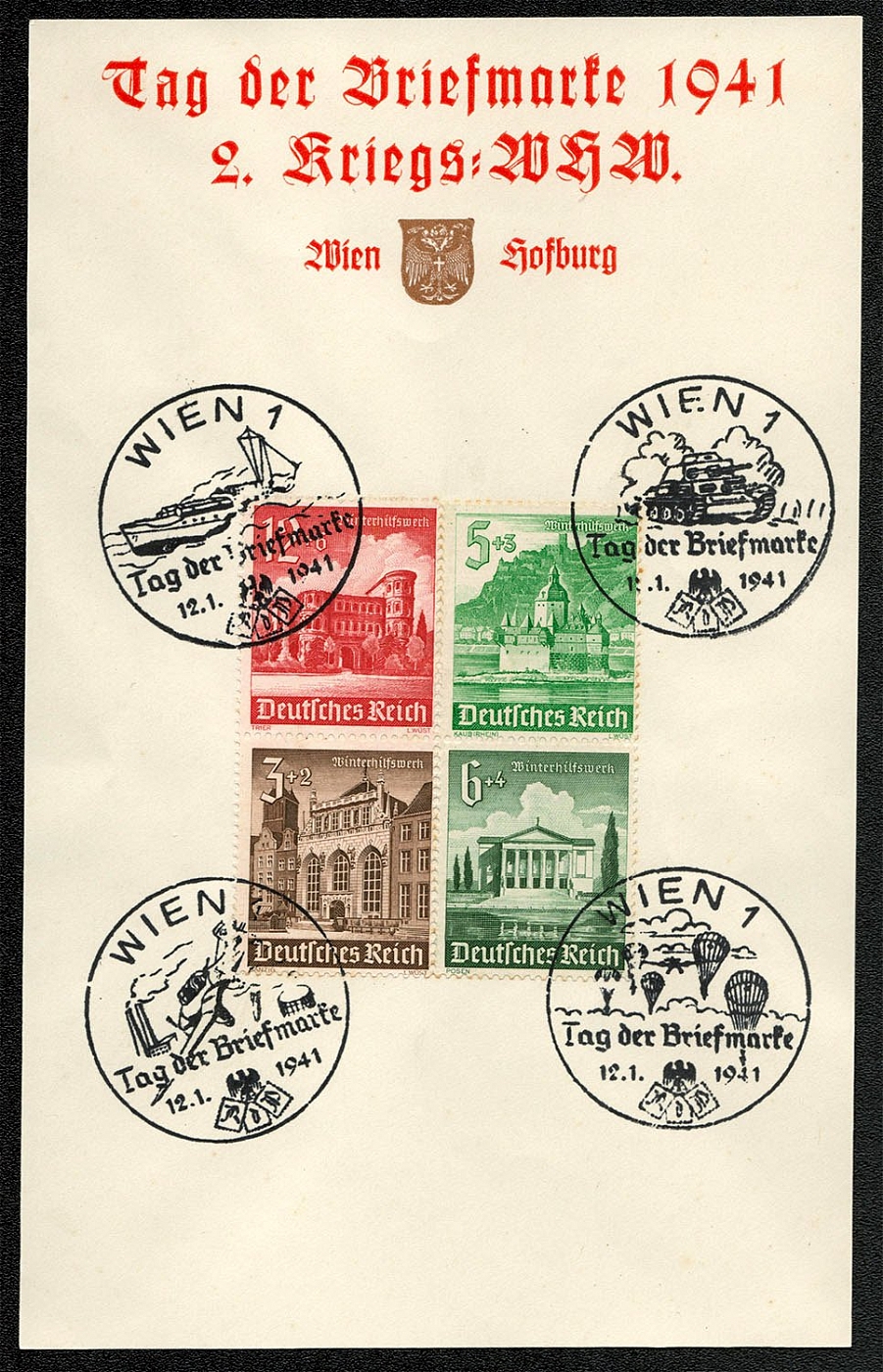
1941 Souvenir card from the 1941 Day of the Stamp and the Second Wartime Winter Help. Franked with a block of 4 including se-tenants Sc. B177a and B179a from a pane intended for booklets
Souvenir card from the 1941 Day of the Stamp and the Second Wartime Winter Help. Franked with a block of 4 including se-tenants Sc. B177a and B179a from a pane intended for booklets. The cancellations include depictions of an E-boat, a Panzer, a Stuka dive bomber and parachutists, and are from the set of ten war motif designs used in a number of towns between 10 and 14 January 1941. Wien (Hofburg) 12 January 1941.
Sold for:
$45
451
$35
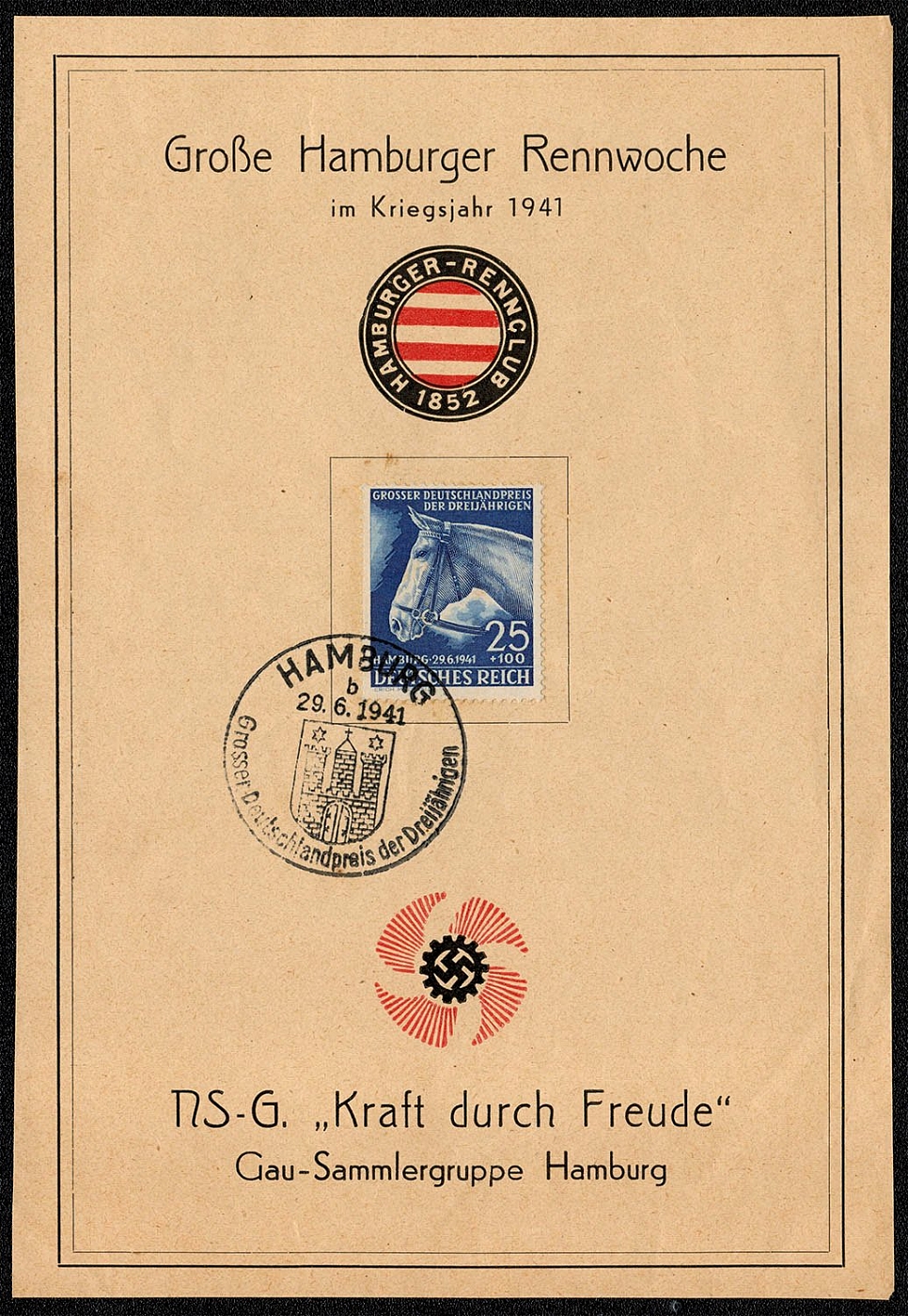
1941 Greater Hamburg Race Week in War Year Souvenir Sheet issued by the Hamburg Gau KdF Collectors Group
Greater Hamburg Race Week in War Year 1941 Souvenir Sheet issued by the Hamburg Gau KdF Collectors Group, postmarked Hamburg, 29 June 1941, the day of the race. The Hamburg Racing Club (founded in 1852) sponsored the Blaures Band.
Sold for:
$35
452
$10
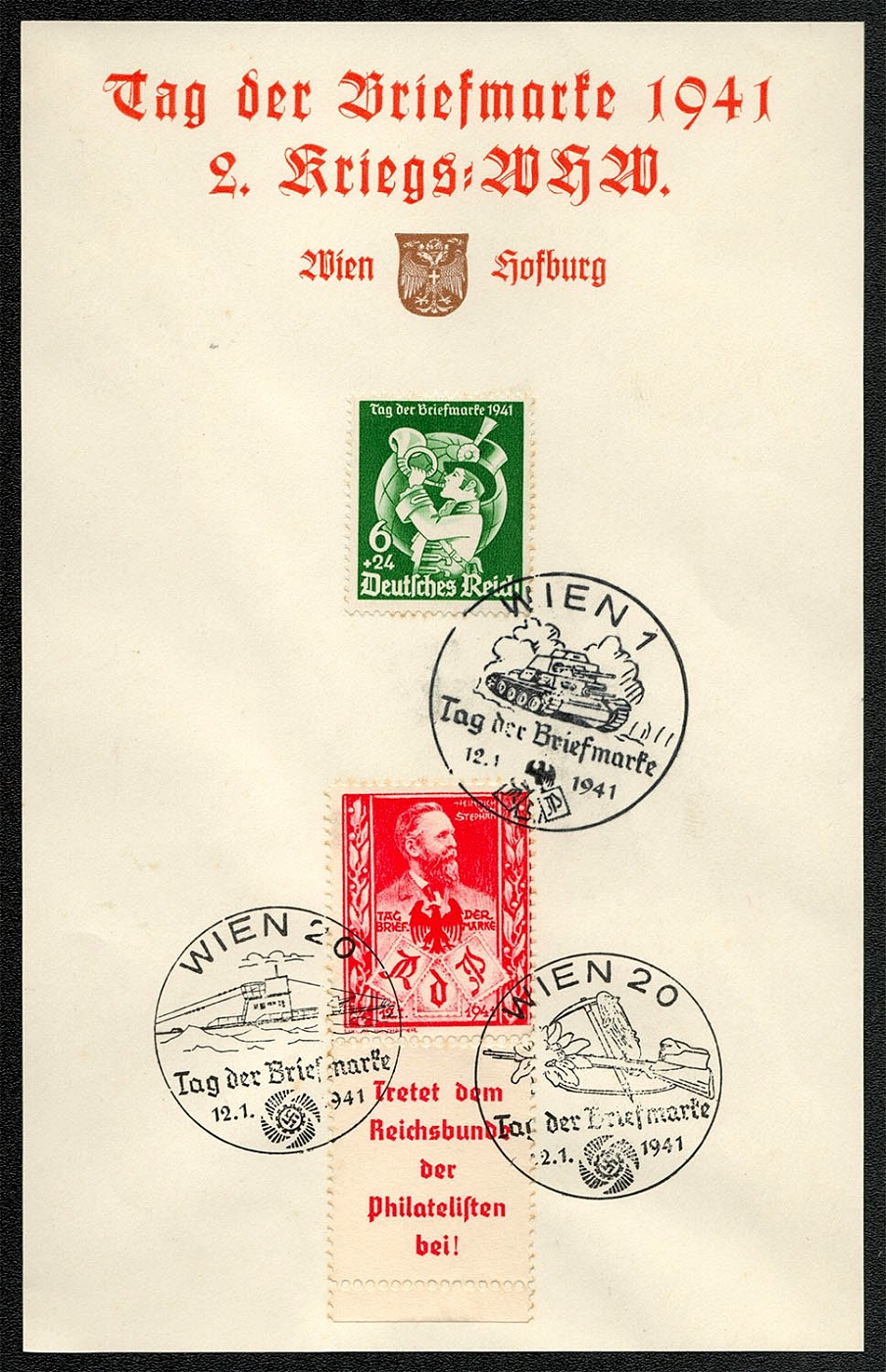
1941 Souvenir card from the 1941 Day of the Stamp and the Second Wartime Winter Help. Franked with Sc. В188 and gummed label
Souvenir card from the 1941 Day of the Stamp and the Second Wartime Winter Help. Franked with Sc. В188 and 3 gummed labels (Klebezettel) publicizing the Reichsbund der Philatelisten. The cancellations include depictions of a submarine, a Panzer, and an edelweiss and rifle, and are from the set of ten Avar motif designs used in a number of towns between 10 and 14 January 1941. Wien (Hofburg) 12 January 1941.
Sold for:
$10
453
$30
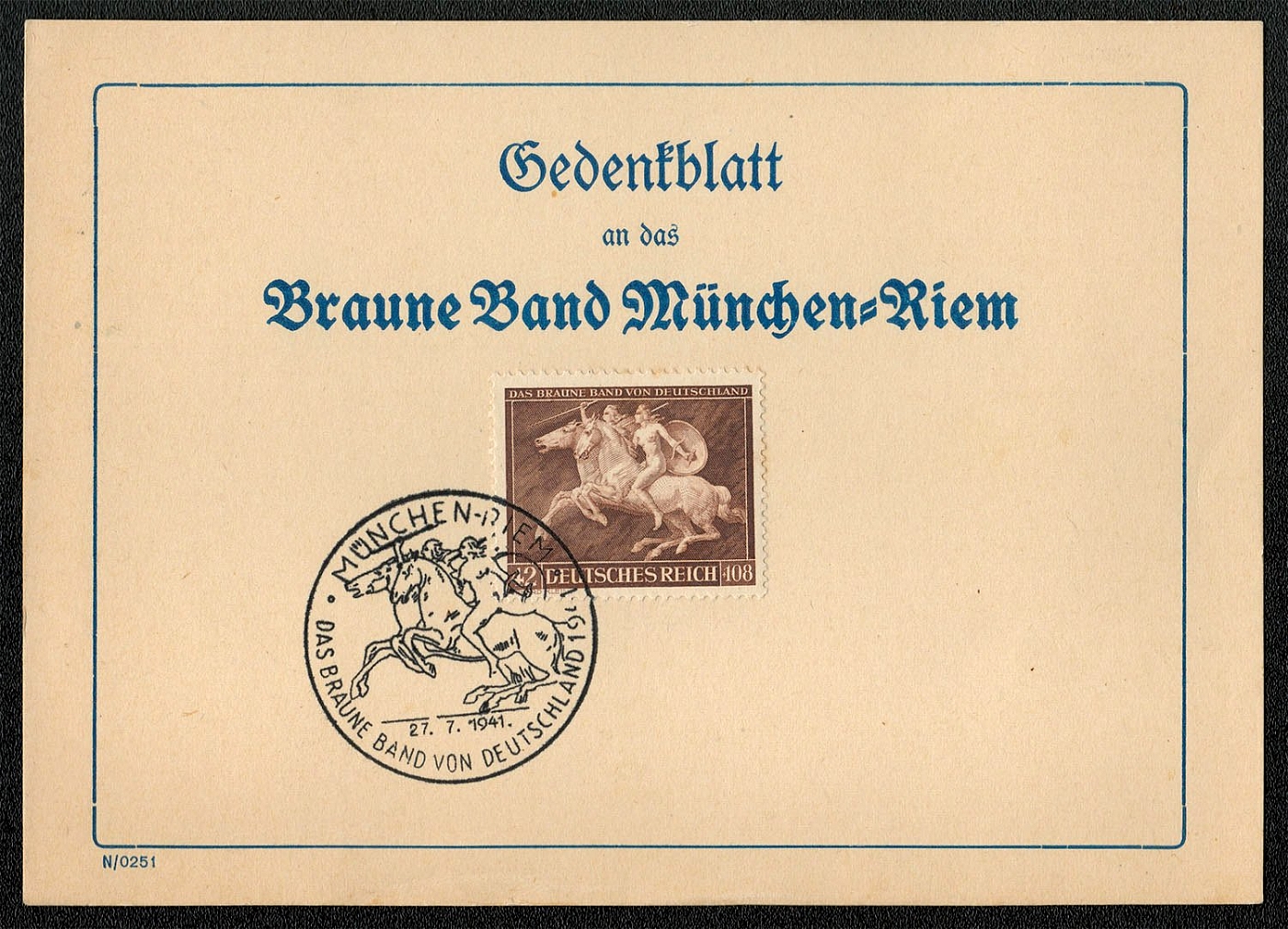
1941 Souvenir Sheet for the Brown Ribbon in Munich-Riem
Souvenir Sheet for the Brown Ribbon in Munchen-Riem The special postmark of the same design as the stamp was used only on the day of the race. The race was won by a horse named Wilding, which was ridden by the popular and successful jockey, G. Streit.
Sold for:
$30
454
$20
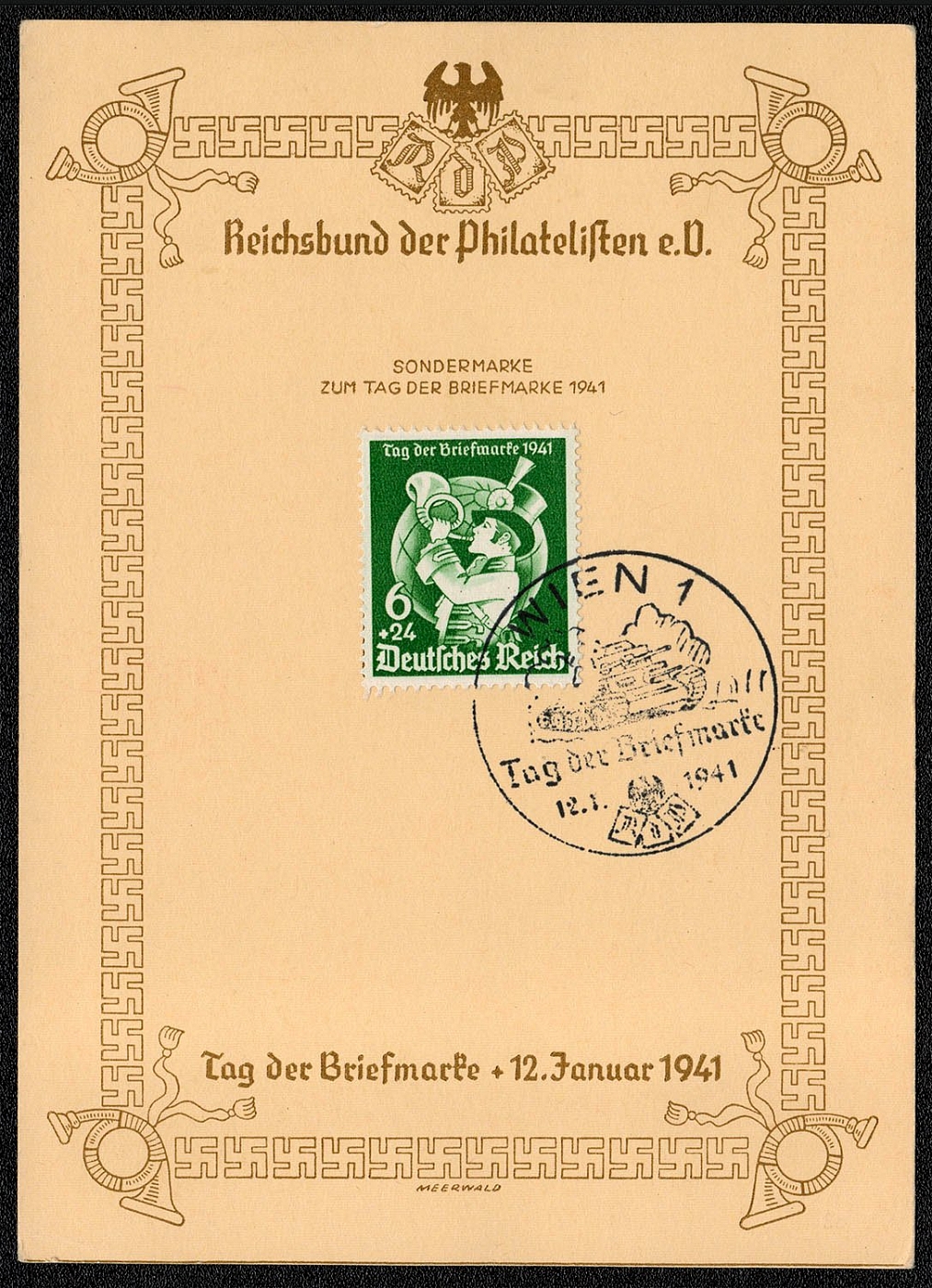
1941 The above souvenir card was designed by Erich Meerwald for the stamp to be adhered and the special postmark to be applied
The above souvenir card was designed by Erich Meerwald for the stamp to be adhered and the special postmark to be applied. It is an interesting card in that it was also used to gain admission to the Reichsbund der Philatelisten Exhibition. Upon entry, the printed bottom section was torn or cut off. Wien, and 51 other towns, used a special cancellation depicting a panzer.
Sold for:
$20
455
$20
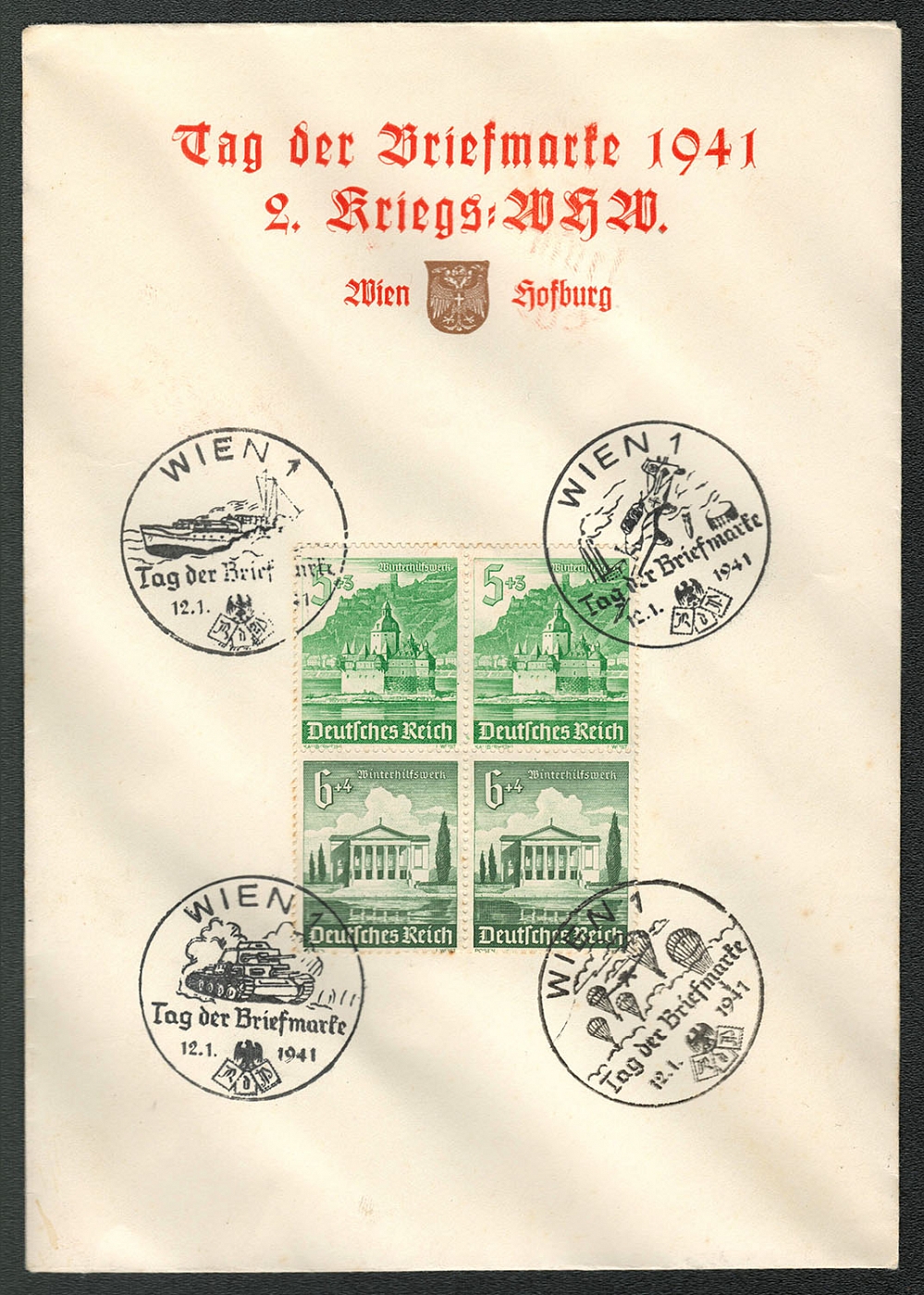
1941 Souvenir envelope from the 1941 Day of the Stamp and the Second Wartime Winter Help. Franked with a block of 4 se-tenants
1941 Souvenir card from the 1941 Day of the Stamp and the Second Wartime Winter Help. Franked with a block of 4 se-tenants
Sold for:
$20
456
$18
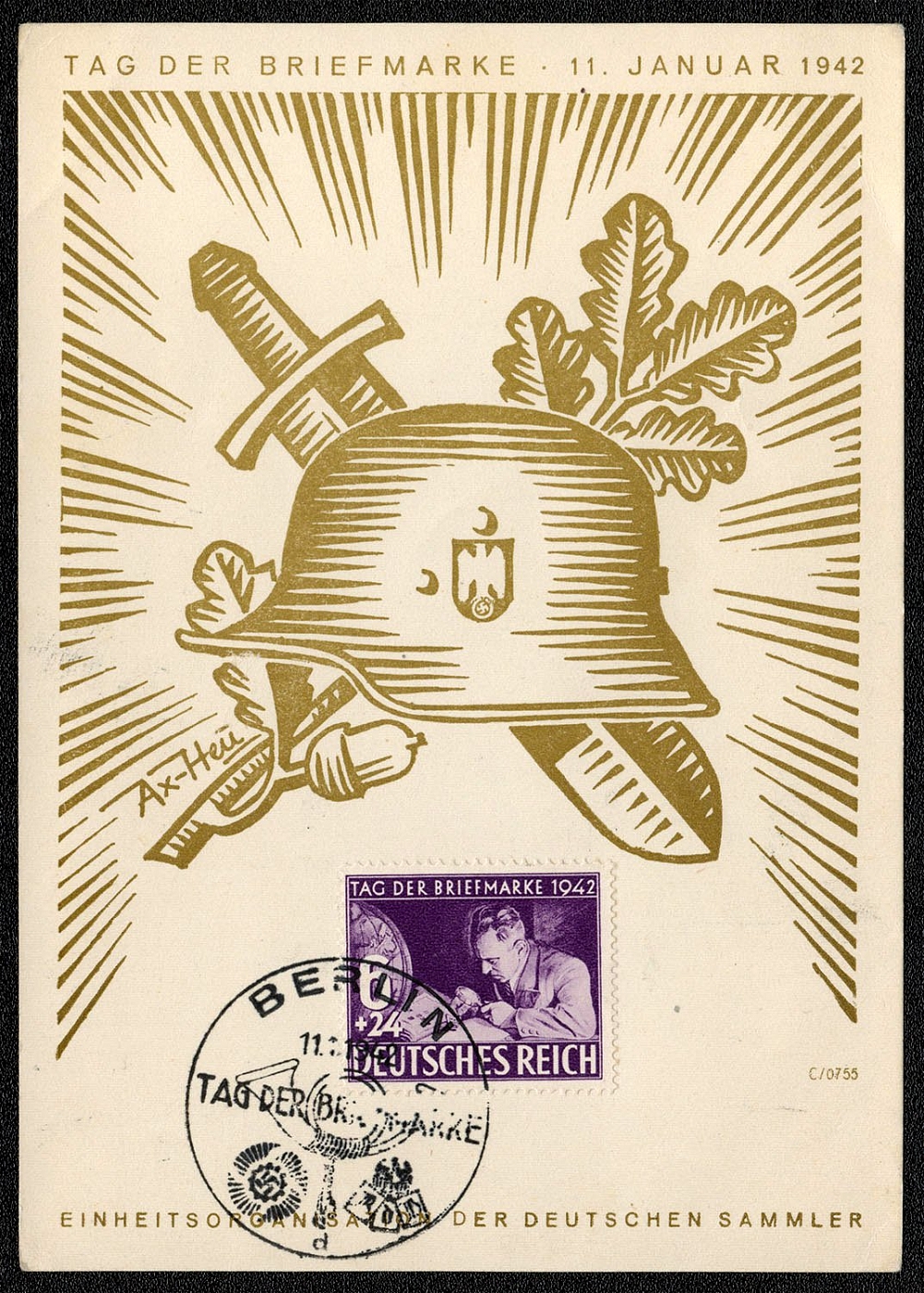
1942 Souvenir card issued for the Day of the Stamp
Souvenir card issued for the 1942 Day of the Stamp. Designed by Axster-Heudtlass, it depicts an iron helmet, an oak branch and a sword. It was ordered by the Einheitsorganisation der Deutschen Sammler (United Organization of German Collectors). The Gefalligkeitsstempel (favor cancellation) dated 11 January 1942, Berlin, depicts a posthorn. The initials RdP stand for Reichsbund der Philatelisten, part of the KdF. Postmarks with similar designs were used in 132 other towns.
Sold for:
$18
457
$20
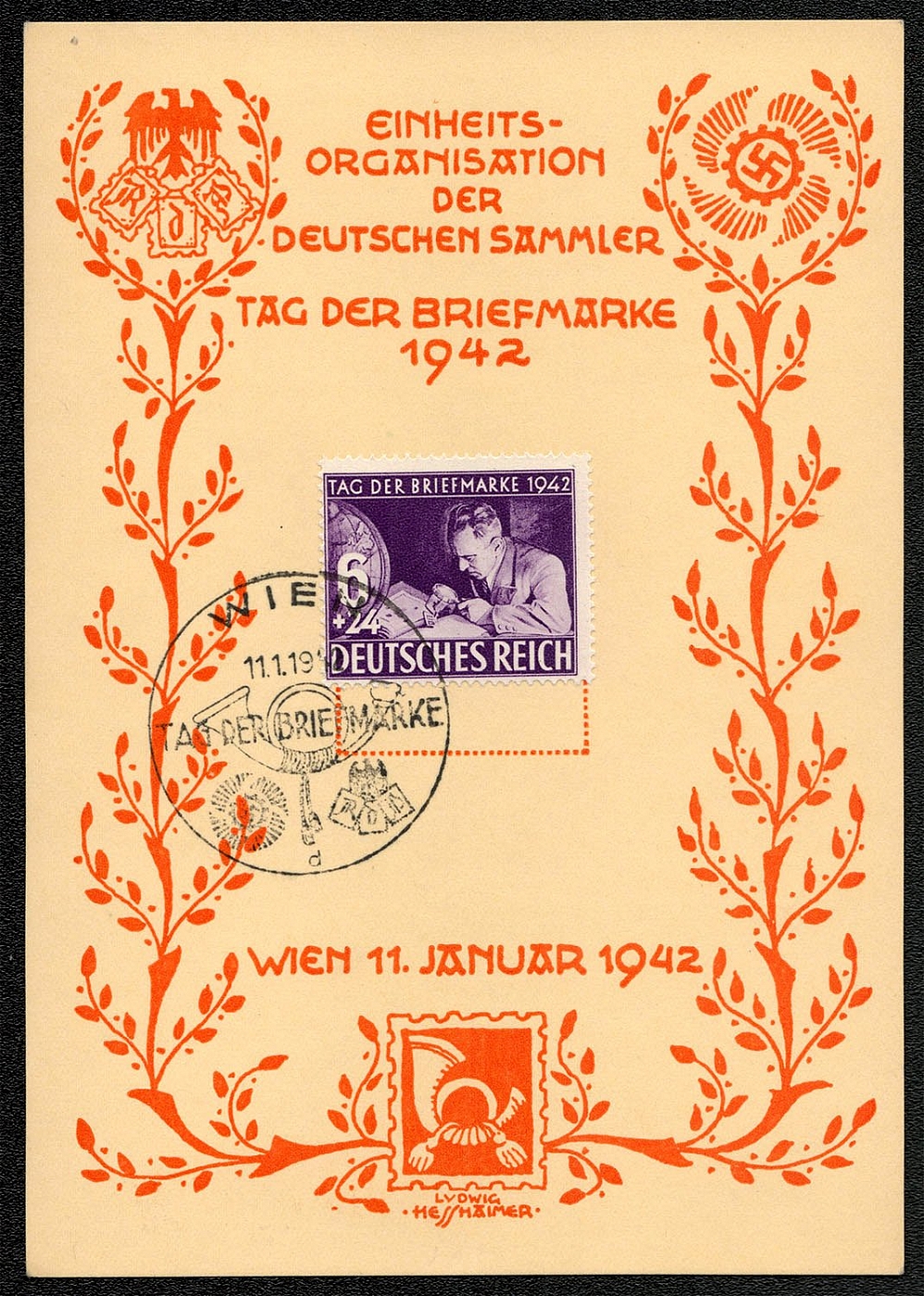
1942 Souvenir card issued for the 1942 Day of the Stamp. Designed by Ludwig Hesshame
Souvenir card issued for the 1942 Day of the Stamp. Designed by Ludwig Hesshamer, it depicts the emblems of the Reichsbund der Philatelisten (upper left) and the Kraft durch Freude (upper right). It was ordered by the Einheitsorganisation der Deutschen Satnmler (United Organization of German Collectors). The Gefalligkeitsstempel is dated 11 January 1942, Wien. Postmarks with similar designs were used in 132 other towns.
Sold for:
$20
458
$18
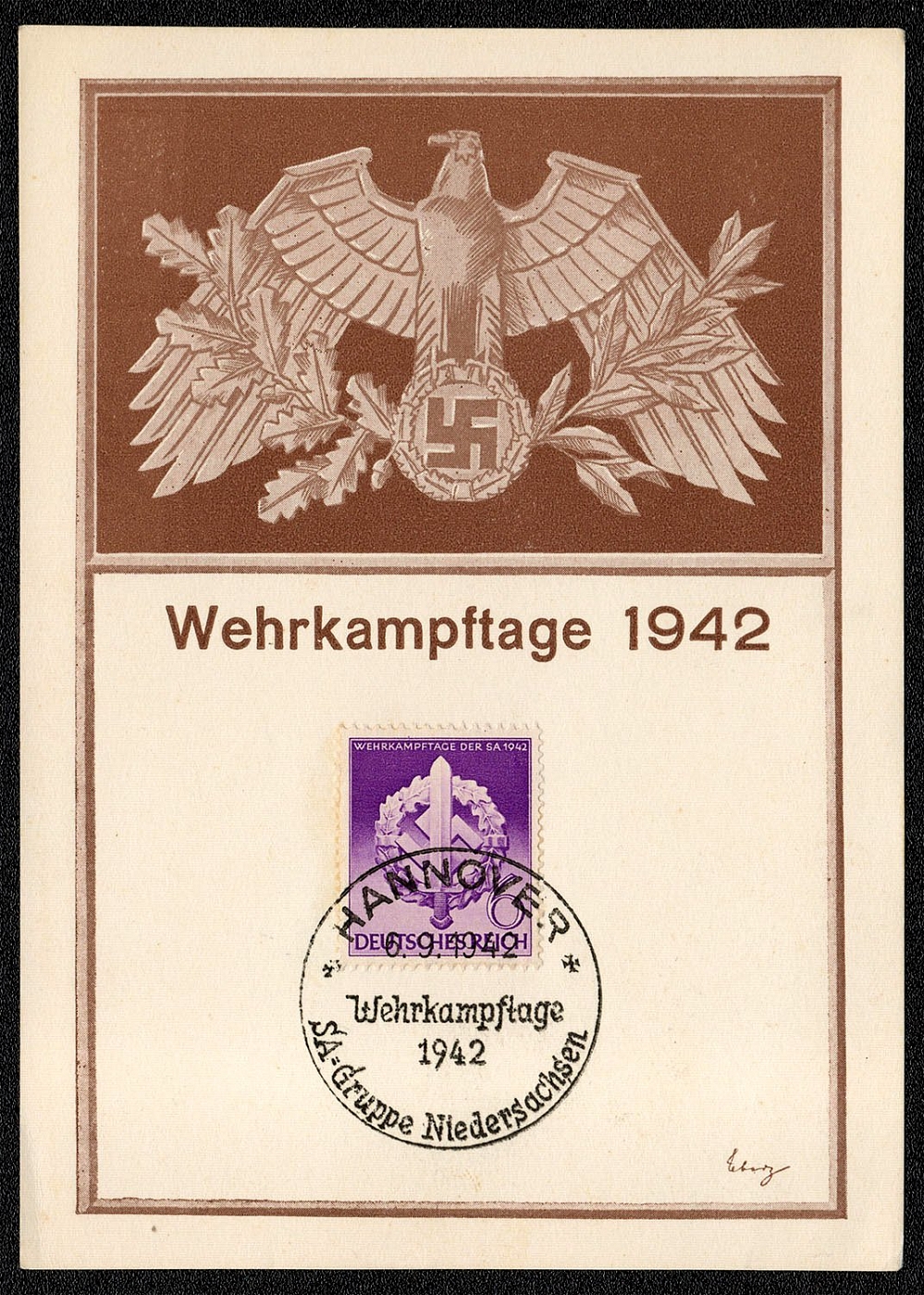
1942 SA Military Contest Days Souvenir Card
1942 SA Military Contest Days Souvenir Card Niedersachsen Sturmabteilung Group Hannover, 6 September 1942
Sold for:
$18
459
$25
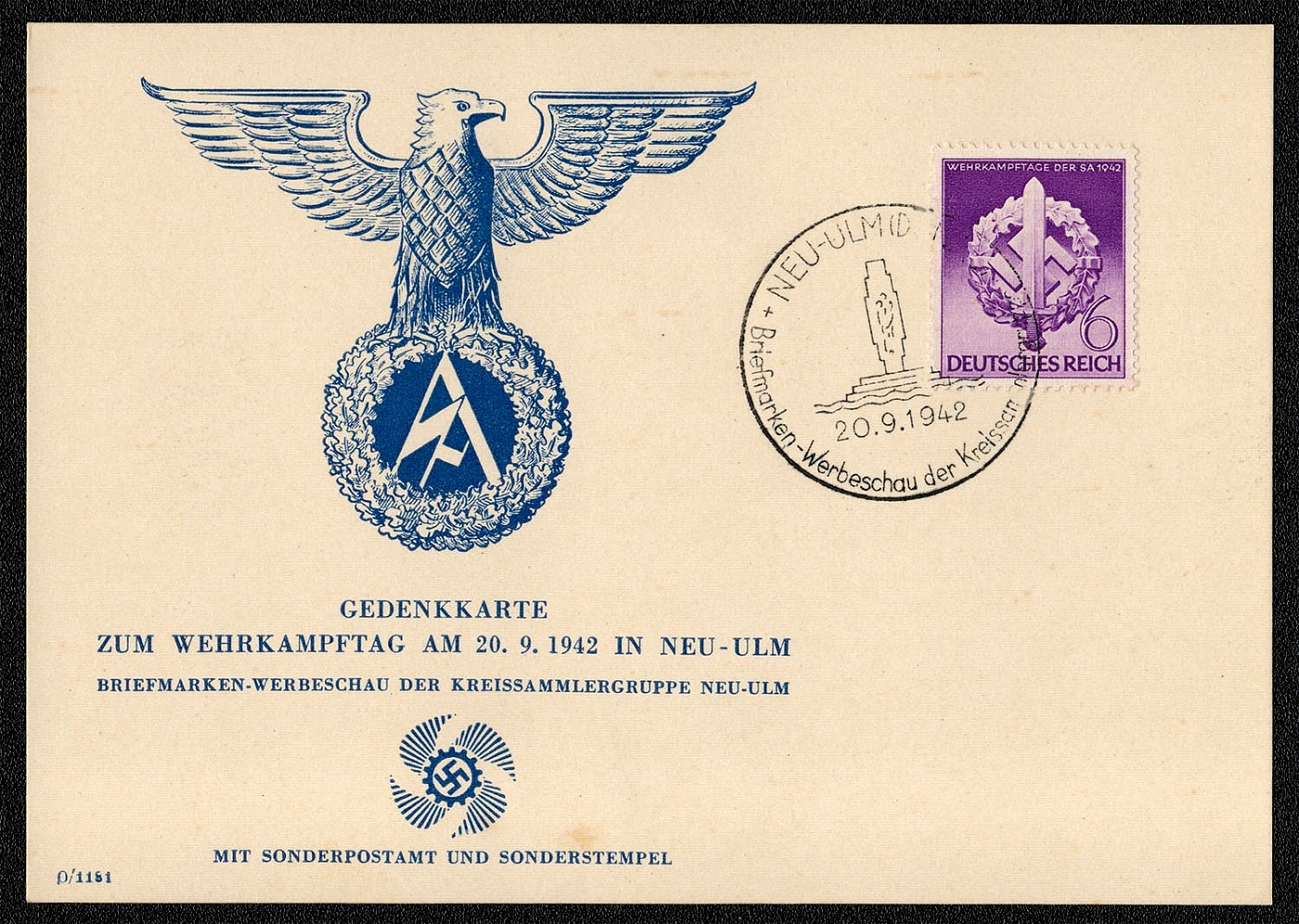
1942 Souvenir Card Military Contest Day
SOUVENIR CARD MILITARY CONTEST DAY ON 20. 9. 1942 IN NEU-ULM THE NEU-ULM DISTRICT COLLECTORS GROUP STAMP SHOW WITH SPECIAL POST OFFICE AND CANCELLATION In the first half of the 2O'h century, Neu-Ulm was a separate entity on the right bank of the River Donau opposite Ulm, a former imperial free city. The pre-war population of the area was approximately 75,000, and its chief industries were weaving and the manufacture of machinery. The special cancellation depicting a memorial was only used on 20 September 1942.
Sold for:
$25
460
$30
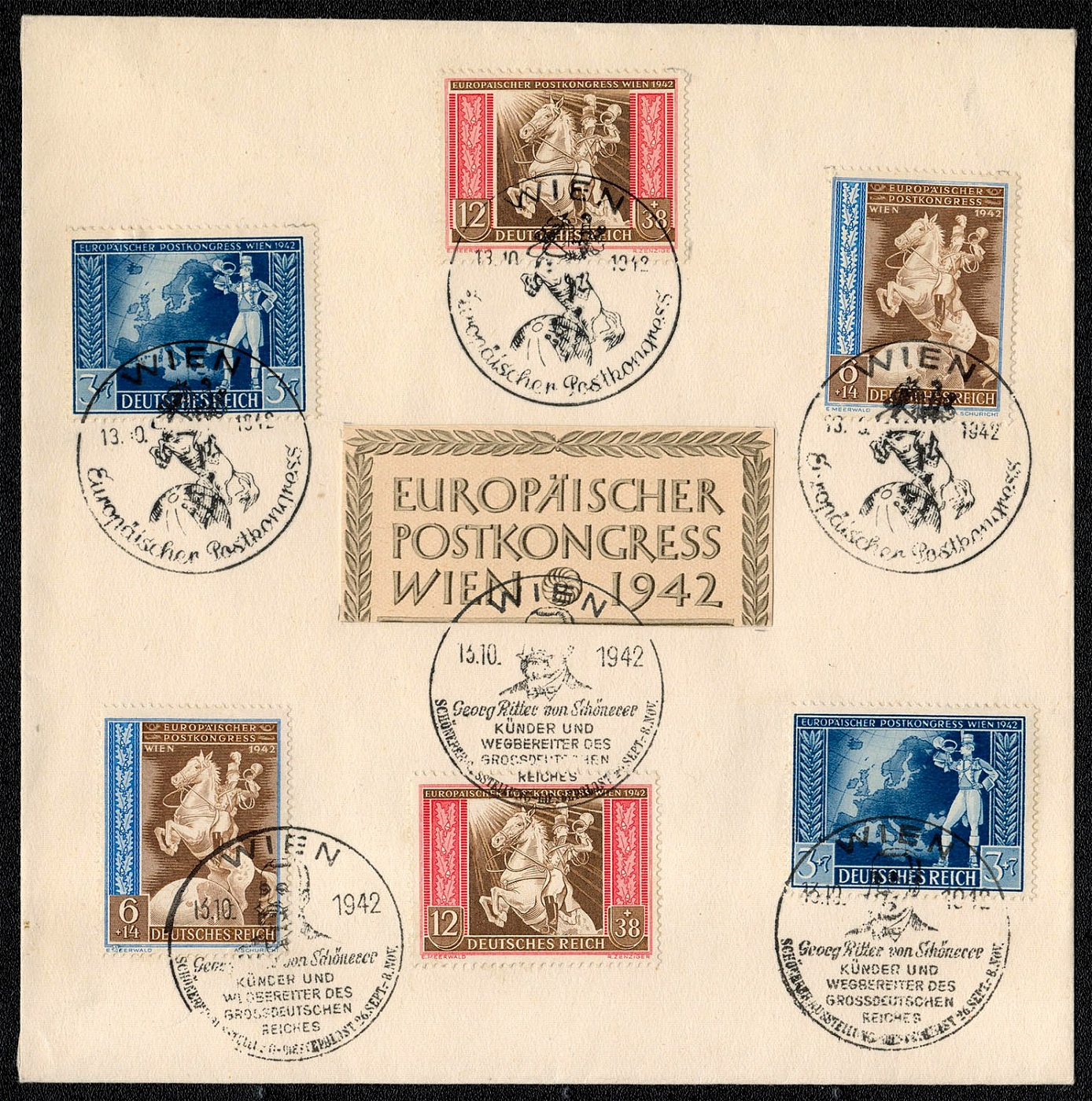
1942 Scott Nos. B209-211 cancelled to order on an impromptu souvenir sheet made from a Hotel Bristol A.G. (Wien) envelope
Scott Nos. B209-211 cancelled to order on an impromptu souvenir sheet made from a Hotel Bristol A.G. (Wien) envelope. Postmarked 13 October 1942 during the European Postal Congress. The special Postkongress cancellation depicts a mounted postilion. It was used in Wien during the period of the conference, 12 through 24 October 1942. The other postmark commemorates the Georg v. Schonerer Exhibition held in Wien from 26 September to 8 November 1942. The inscription translates, Exhibition/Georg Ritter von Schonerer /Preparer of the Greater Germany. Von Schonerer could be called the founding father of the N.S.D.A.P. because he embraced nationalism, anti-Semitism, and the union of Austria and Germany.
Sold for:
$30
461
$7
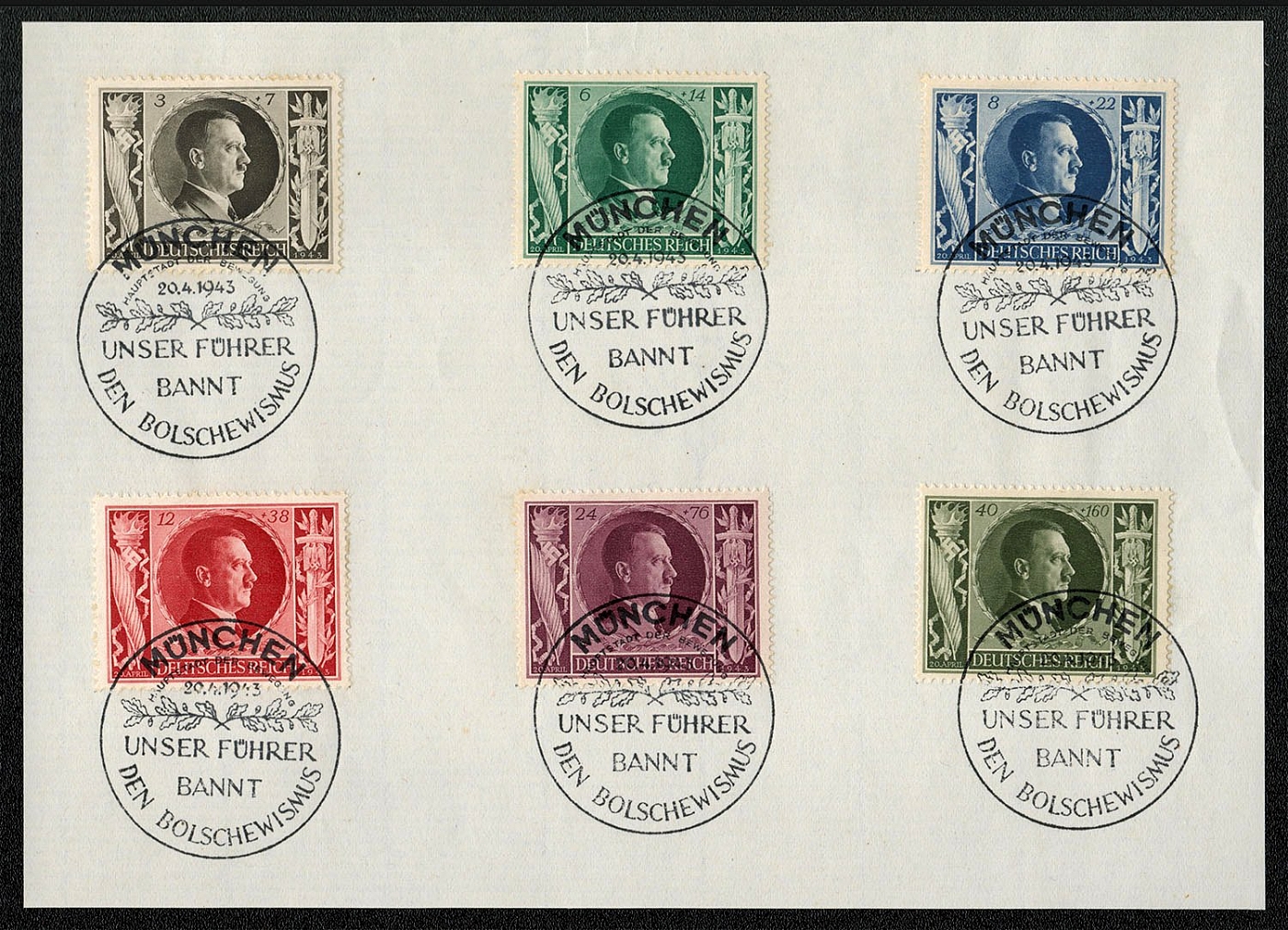
"1943 ""Our Fuhrer Bans the Bolsheviks"" Souvenir sheet franked with Michel 844-849 cancelled 20 April 1943, Hitler’s birthday, in Munich"
(Our Fuhrer Bans the Bolsheviks) Impromptu souvenir sheet franked with Michel 844-849 cancelled 20 April 1943, Hitler’s birthday, in Munchen. Few souvenir cards were sponsored by collector clubs due to war restrictions, and no official postal stationery was issued by the Reichspost. The special postmark was used in Amsterdam, Berlin, Braunau, Nurnberg and Wien besides the depicted Munchen.
Sold for:
$7
462
-
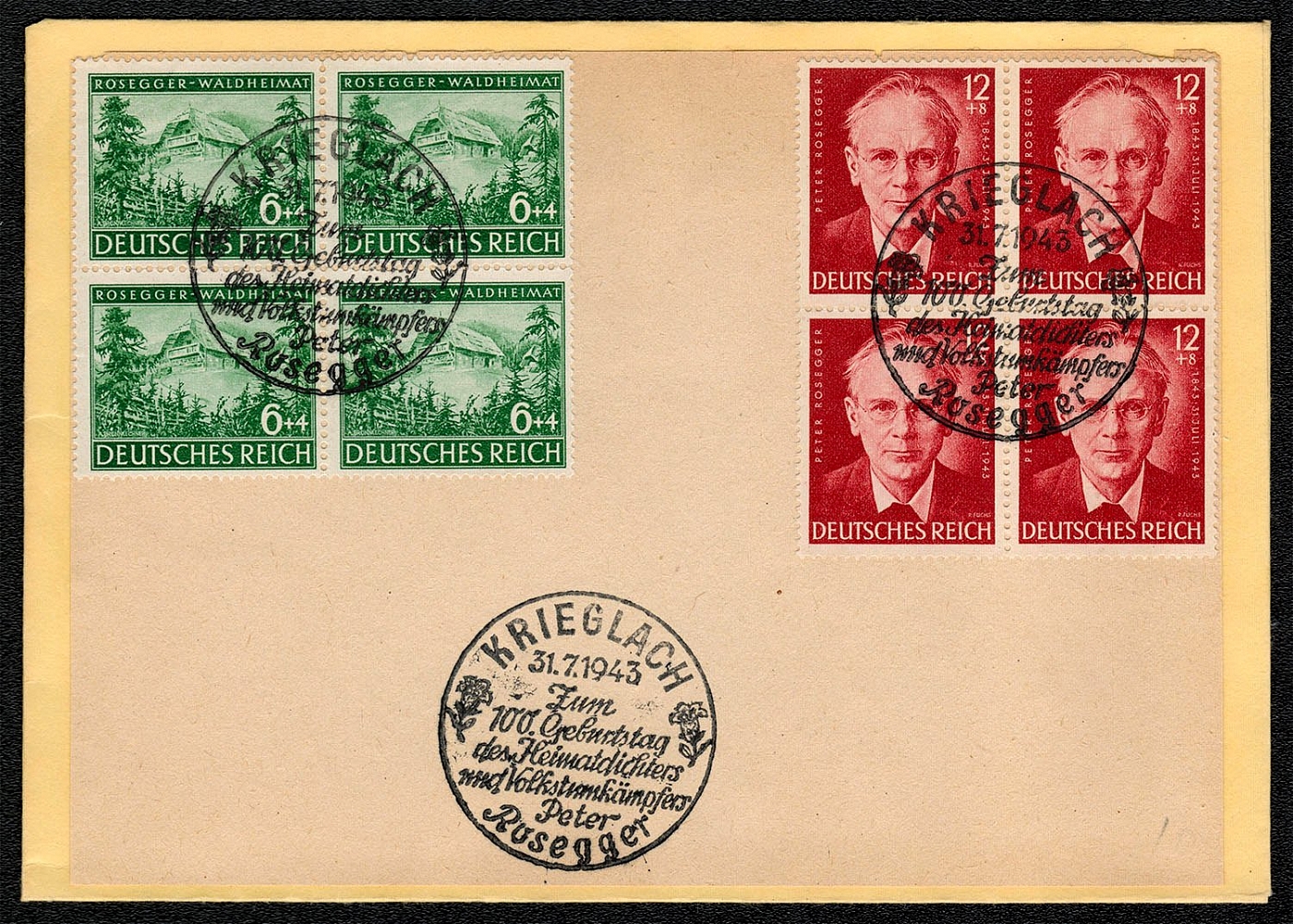
1943 Souvenir sheet franked with Scott B241-2 with the special postmark used to commemorate the hundredth anniversary of the birth of Peter Rosegger
Impromptu souvenir sheet franked with Scott B241-2 with the special postmark used to commemorate the hundredth anniversary of the birth of Peter Rosegger. It translates, Hundredth birthday of writer of habits and folklore of the people - Peter Rosegger. It was used in Krieglach on 31 July 1943 only.
Unsold
463
$10
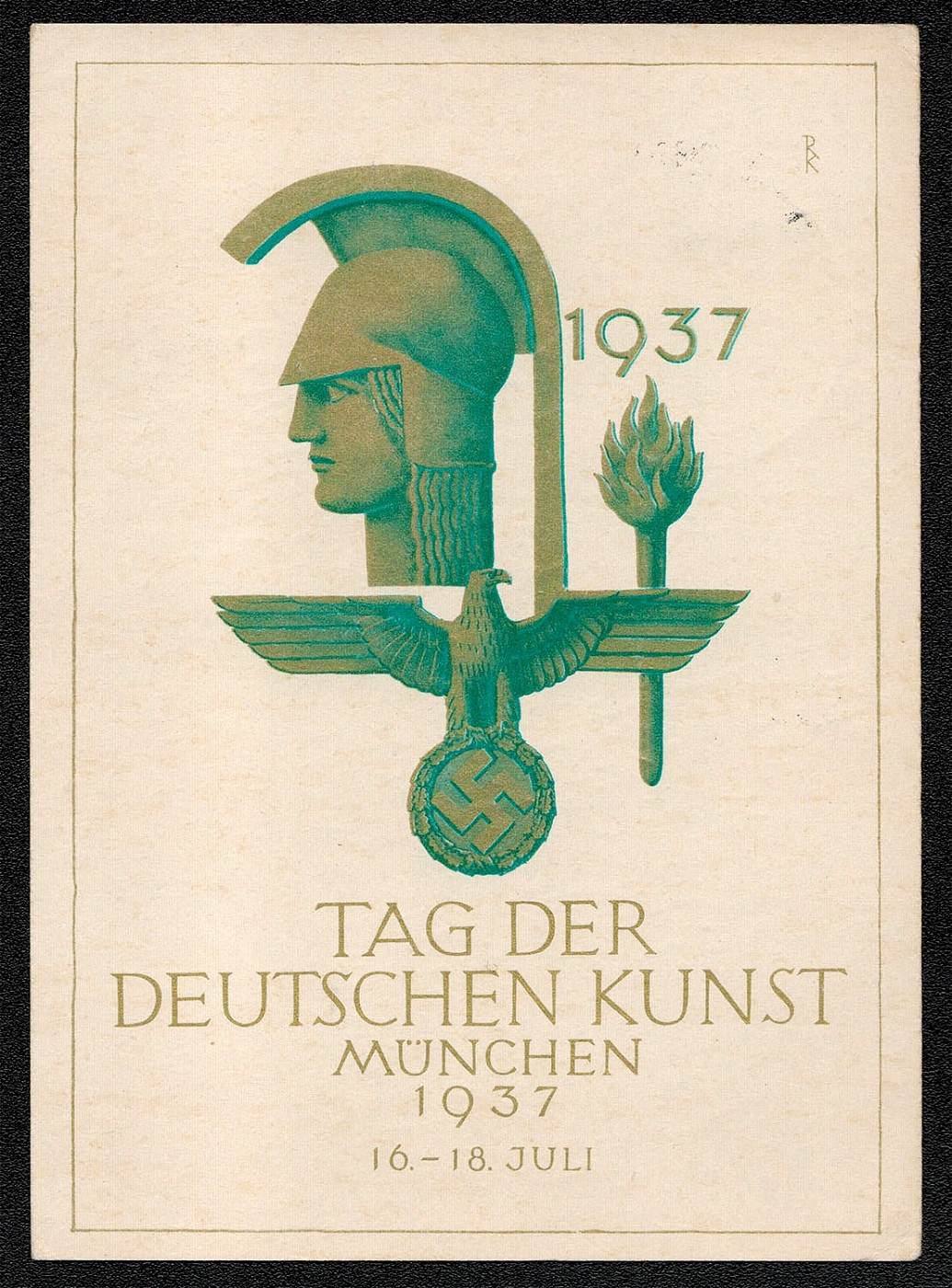
1937 The Day of German Art Munich Official Festival Post Card franked with Sc 419 postally used in Munich
Official Festival Post Card franked with Sc 419 postally used in Miinchen, 18 July 1937. “The new art canon enjoined the banishment of all evocations of human anguish, distress and pain—in other words all ugliness from people’s consciousness. Gleischschaltung (Coordination with the Regime) proceeded less hurriedly in the sphere of the visual arts than in some other spheres. Only the concurrent exhibitions in Miinchen of NS-sponsored art and Degenerate Art in the summer of 1937 signified the completion of the purging and whipping process, the delay was in part due to the overlapping activities of Rosenburg’s Combat League and Goebbels’ Reich Chamber of Art.”
Sold for:
$10
464
-
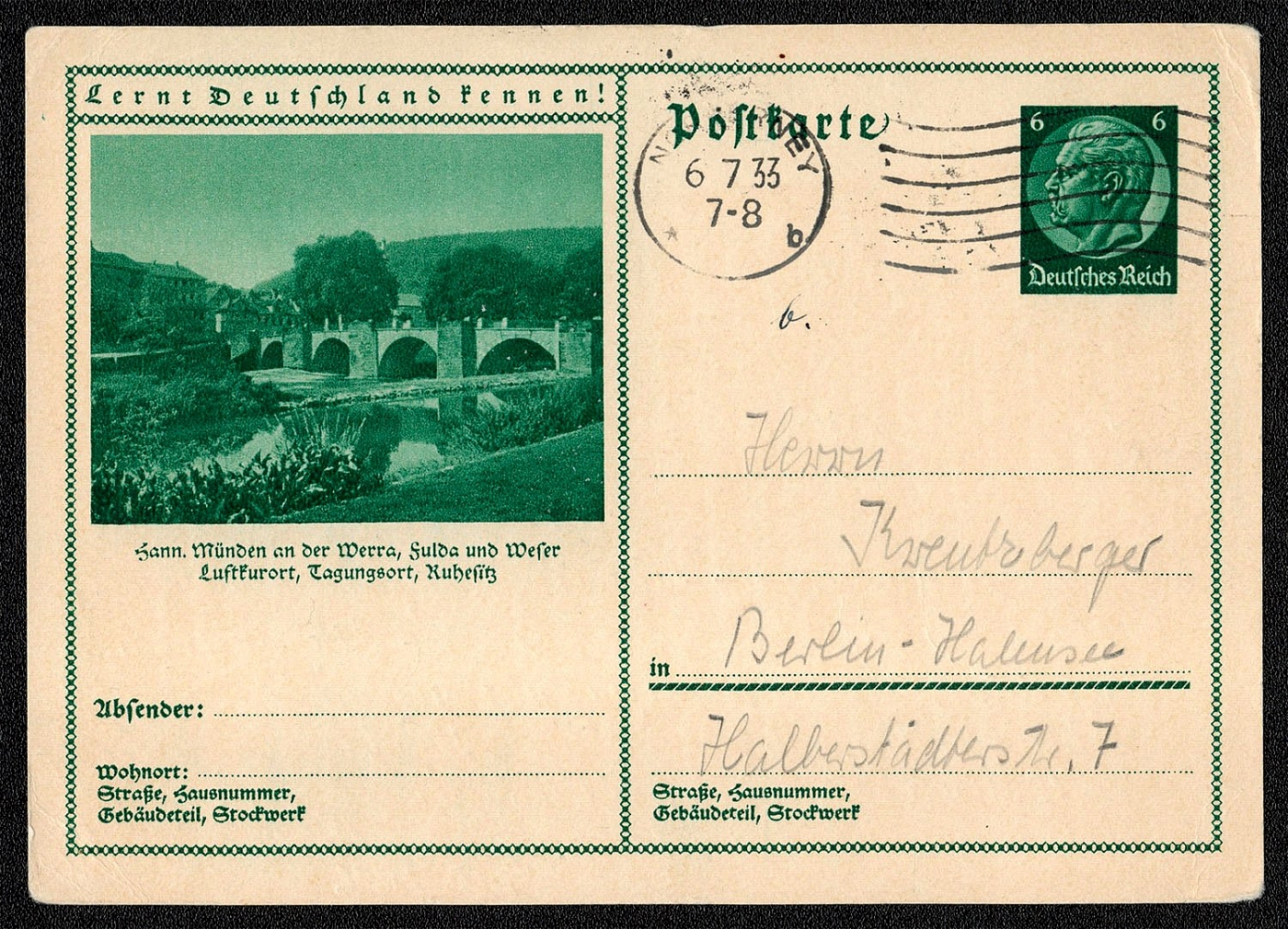
1933 Hannover, leading into the Werra, Fulda and Weser Rivers with climatic health resorts
Hannover, leading into the Werra, Fulda and Weser Rivers with climatic health resorts, conference venues and places of rest. $ Posted 6 July 1933 in Norderney. Norderney, the second largest of the East Frisian Islands in the North Sea, is eight miles long and a mile and half wide. It owes its reputation to a fine sandy beach, good drinking water, and a mild climate. The village had approximately 4500 permanent residents in 1933, and was one of the most fashionable German sea bathing places. It was also frequented as a winter resort.
Unsold
465
-
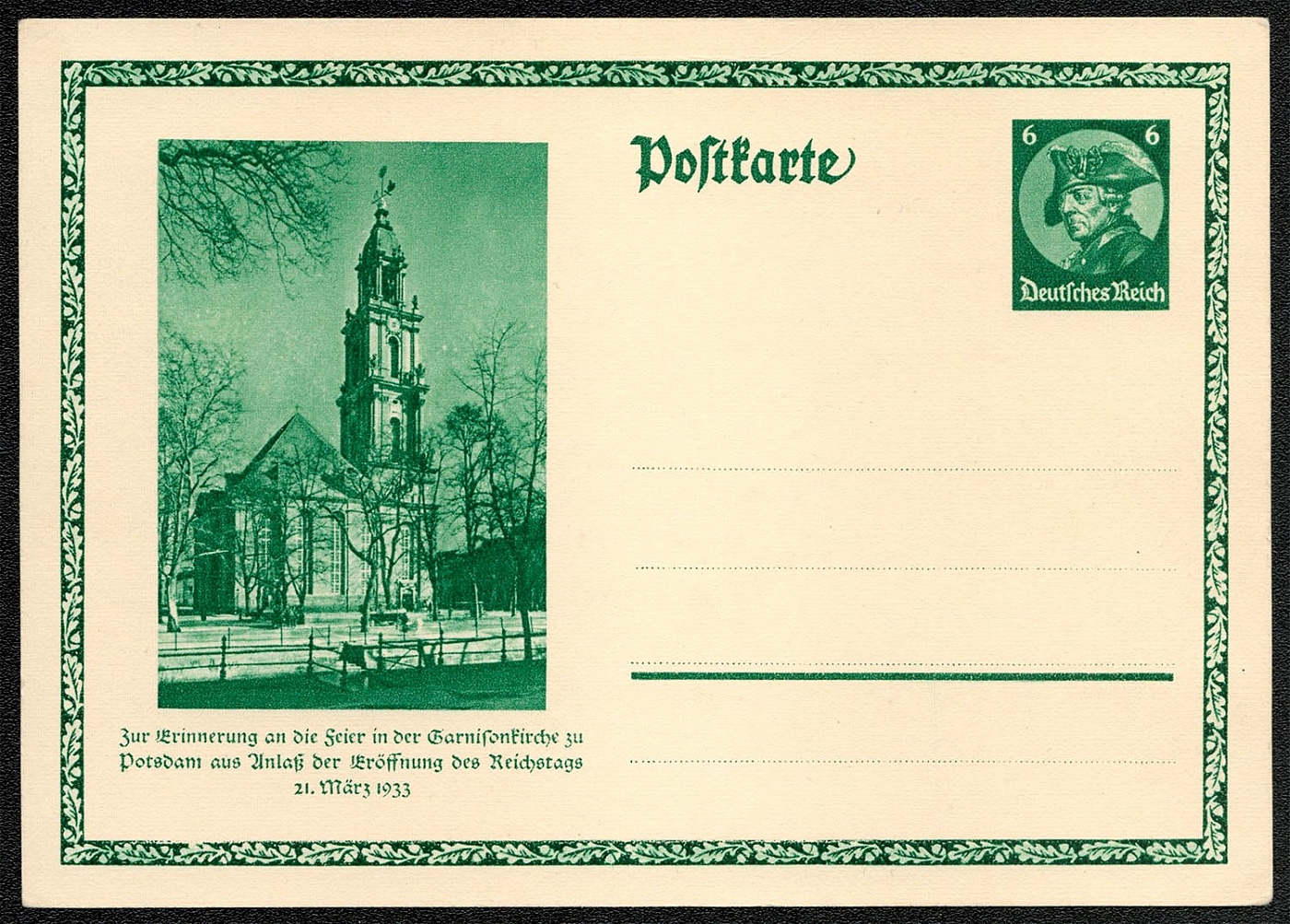
1933 A new Reichstag was established in Potsdam
Hermann Goring, Reichstag president and Hitler’s chief minister, conducted an official investigation, and fixed responsibility for the fire on the German Communist Party. The supposed arsonist was a Dutchman, Marinus van der Lubbe, whom some have claimed was brought to the scene of the crime by Nazi agents. Van der Lubbe was eventually convicted of the crime, but his alleged co-conspirators were found innocent. Others have contended that there was no proof of Nazi complicity in the crime, but that Hitler merely capitalized on van der Lubber’s independent act. The fire is the subject of continued debate and research. On 28 February 1933, the day after the fire, Hitler’s dictatorship began with the enactment of a decree “for the Protection of the People and the State,” which dispensed with all constitutional protection of political, personal, and property rights. Though ensuing elections did not give the Nazis an outright majority, they were able to persuade the Reichstag to pass an Enabling Act on 23 March whereby all its legislative powers were transferred to the Reich Cabinet, thereby sanctioning the dictatorship. A new Reichstag was established in Potsdam, the capital of Brandenburg Land (state) in eastern Germany.
Unsold
466
-
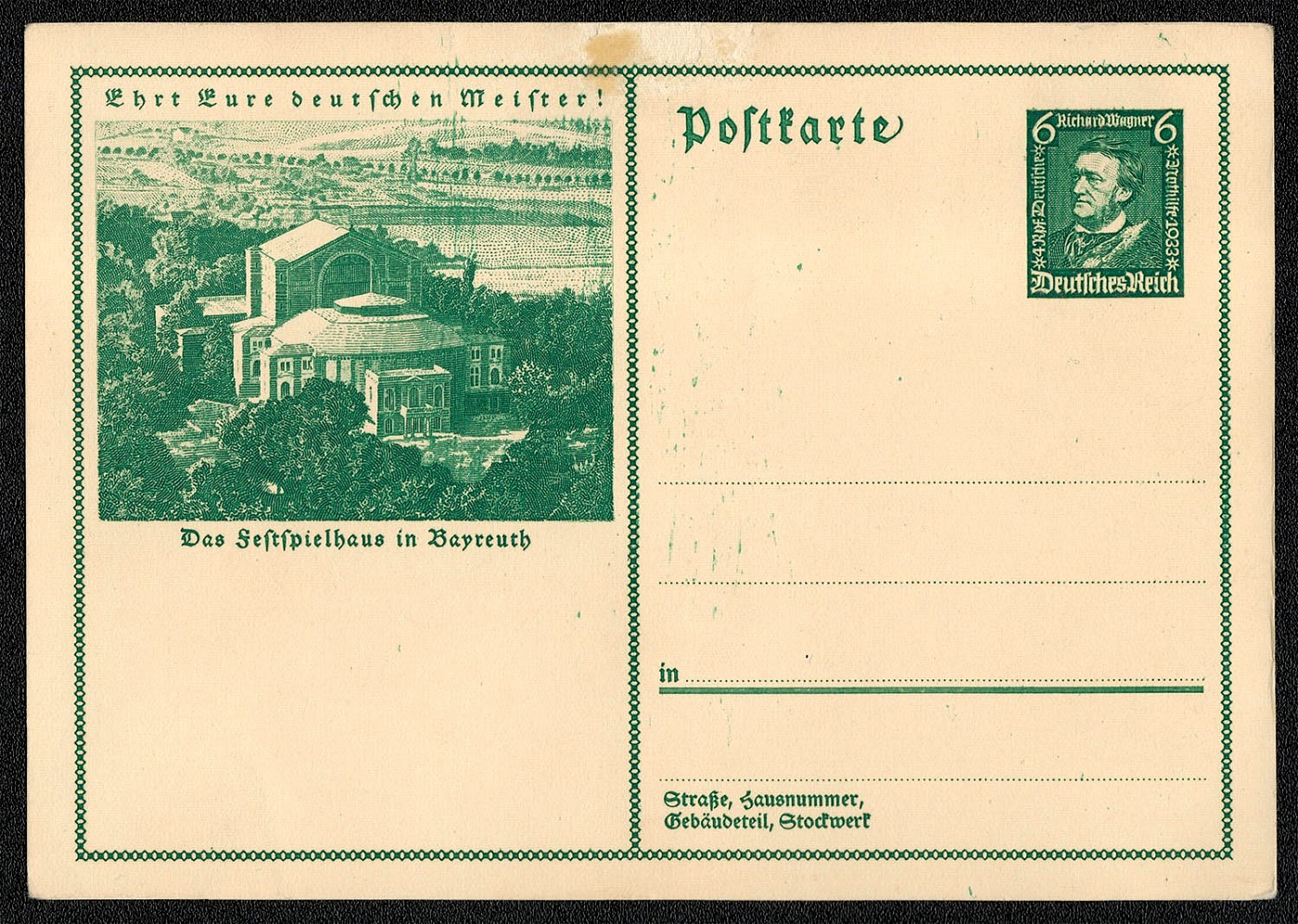
467
-
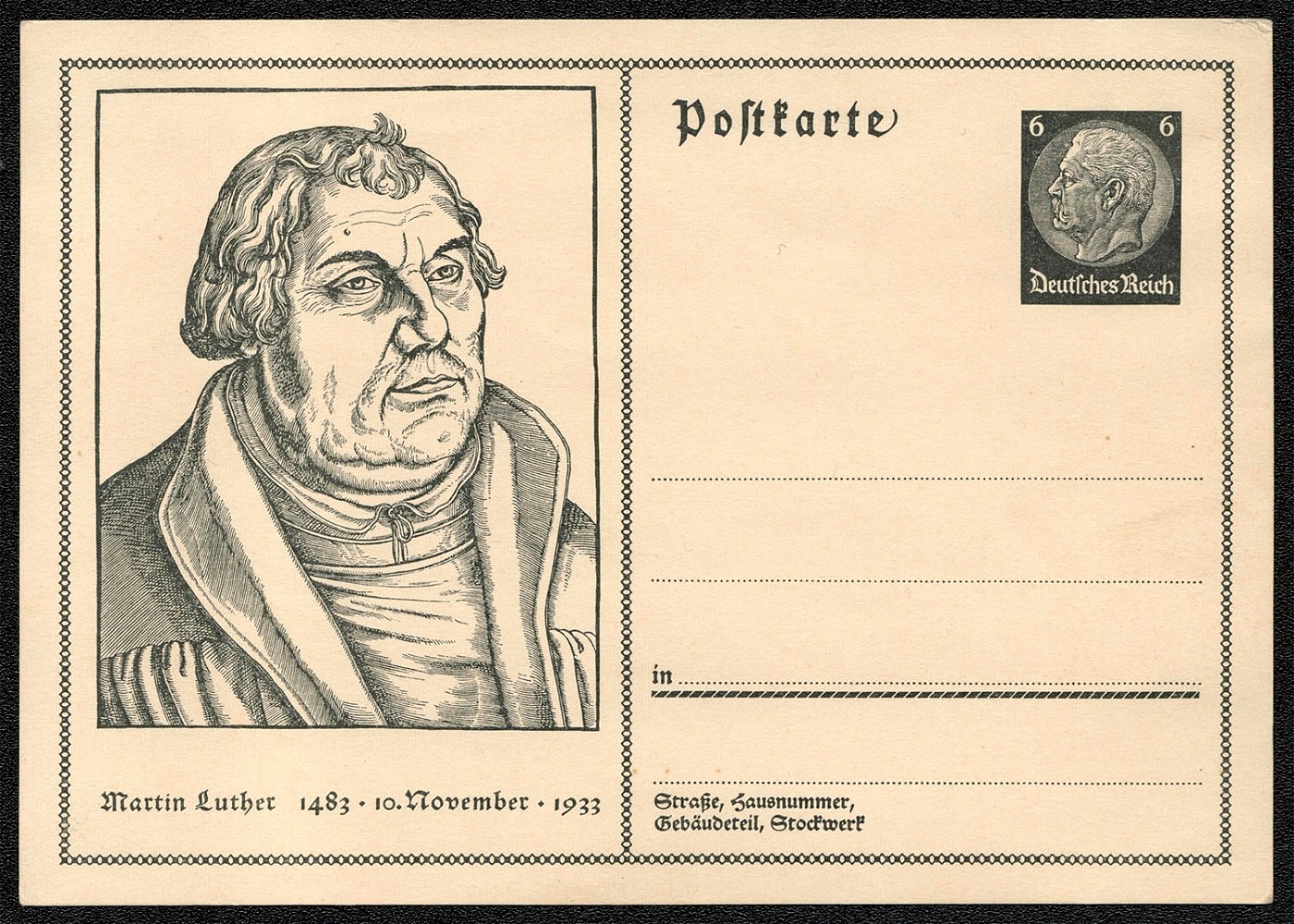
468
-
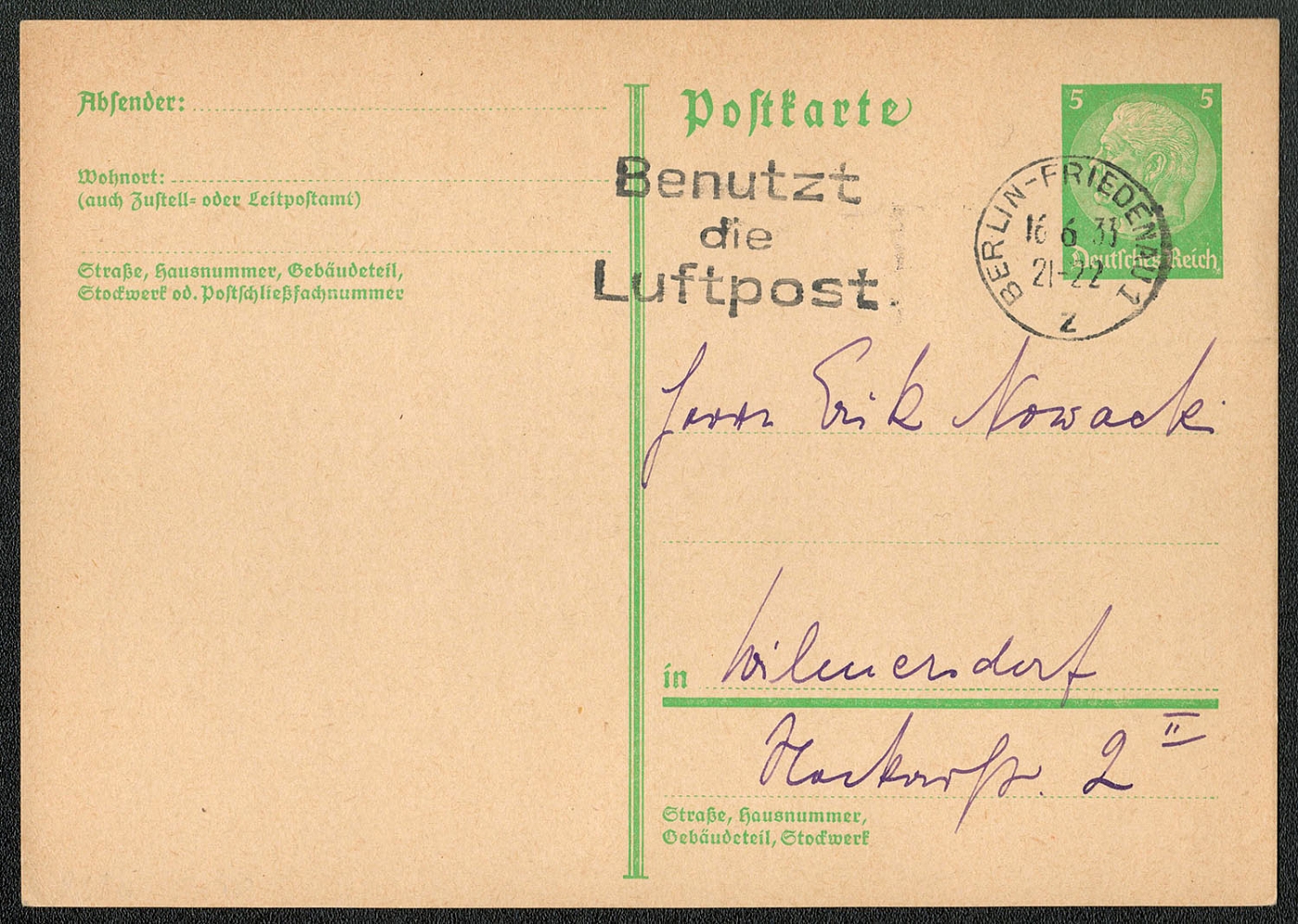
"1933 Berlin. Advertising ""Use the airmail"""
"1933 Berlin. Advertising ""Use the airmail"""
Unsold
469
$10
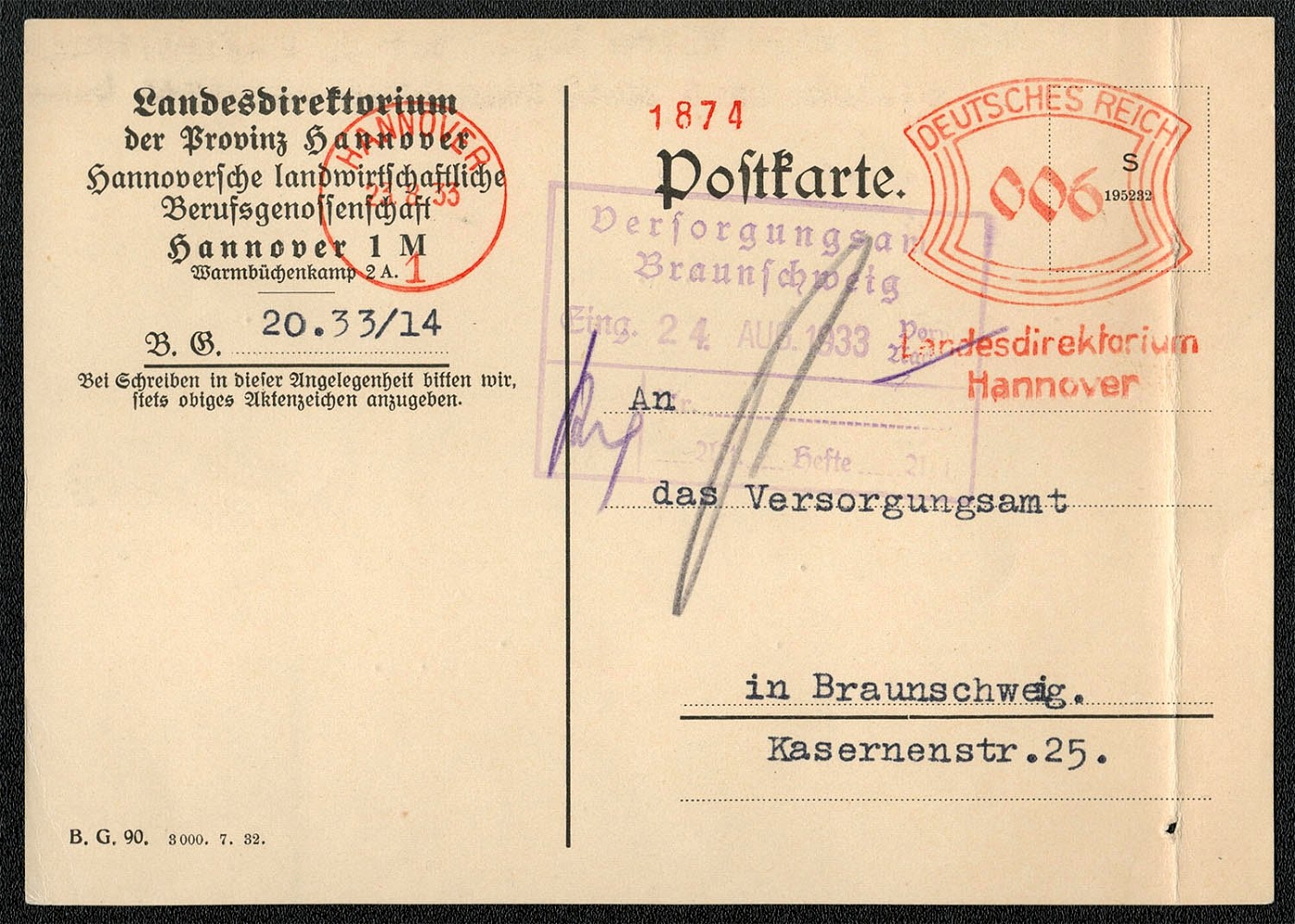
1933 Mailed 23 August in Hannover from the State Director of Hannover Province
A metered post card mailed 23 August 1933 in Hannover from the State Director of Hannover Province to the Maintenance Office in Braunschweig The purple overprint is a receiving handstamp. The typewritten message on the reverse requests notification of a revenue publication.
Sold for:
$10
470
$5
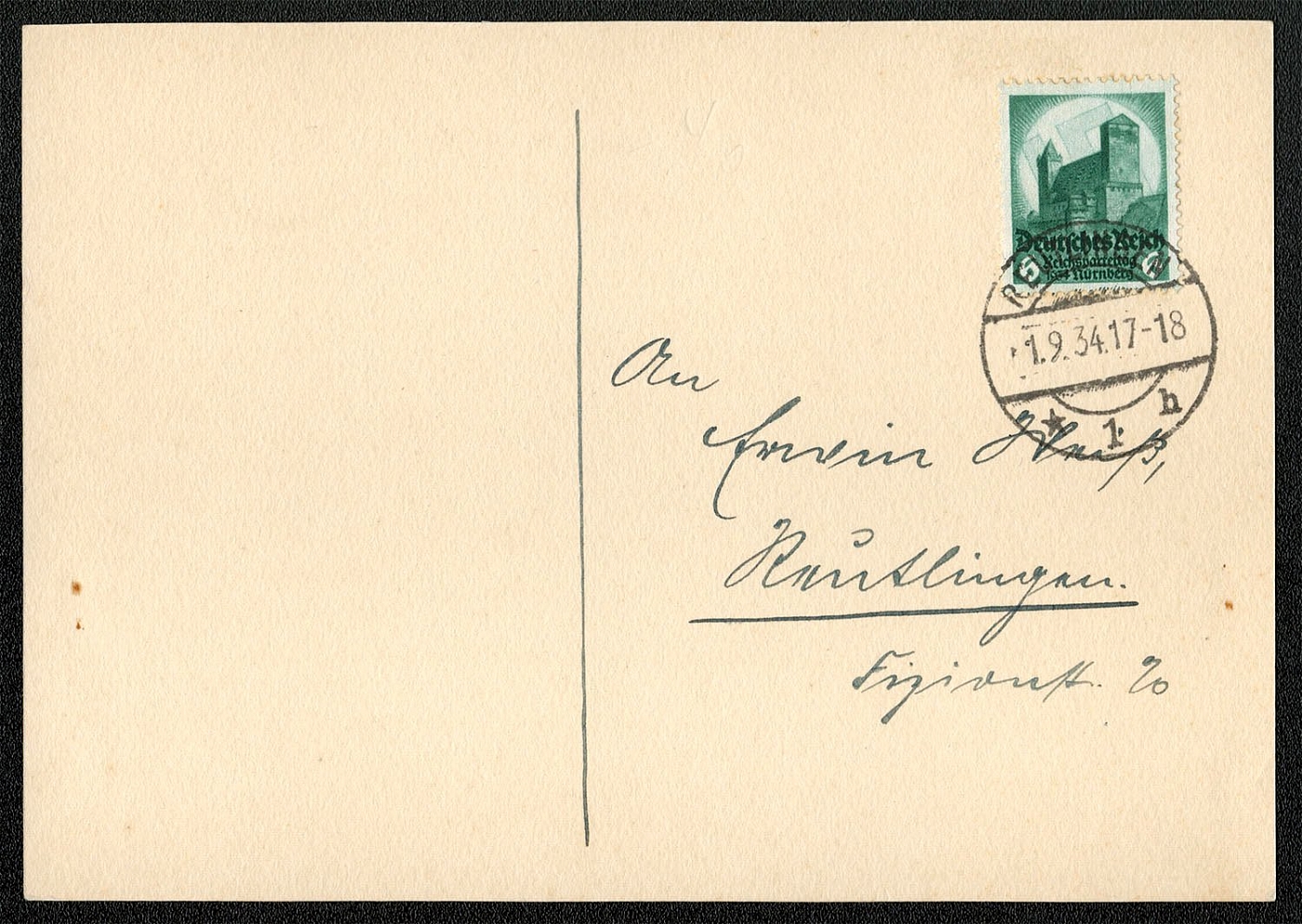
1934 Reutlingen, Baden-Wurttemberg franked with Scott 442 posted on the First Day of Issue
Philatelically prepared postcard franked with Scott 442 posted on the First Day of Issue: 1 September 1934 Reutlingen, Baden-Wiirttemberg.
Sold for:
$5
471
-
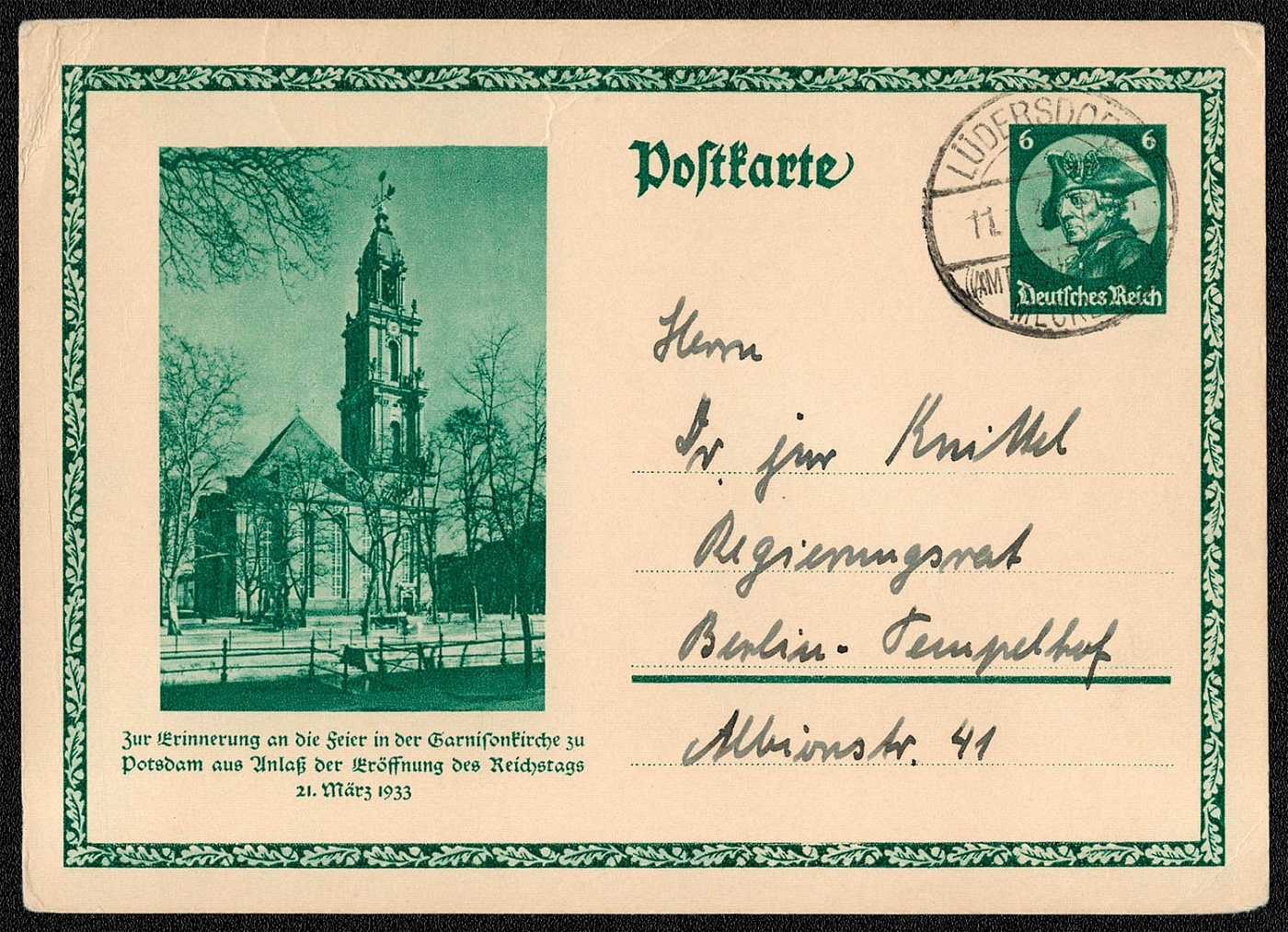
1934 The Opening of the Reichstag in Potsdam mailed in Ludensdorf, Mecklenburg
Michel P248 (issued 12 April 1933 in commemoration of the Opening of the Reichstag in Potsdam) mailed in Ludensdorf, Mecklenburg on 11 January 1934. Although this collector has been unable to identify Ludensdorf, it is believed to have been a small village at the time of the posting. Mecklenburg, however, is a prominent historic region of northeastern Germany, located along the Baltic Sea coastal plain, from the Bight of Lubeck about 100 miles (160 km) eastward. It is now included in the German Land of Mecklenburg-West Pomerania.
Unsold
472
$5
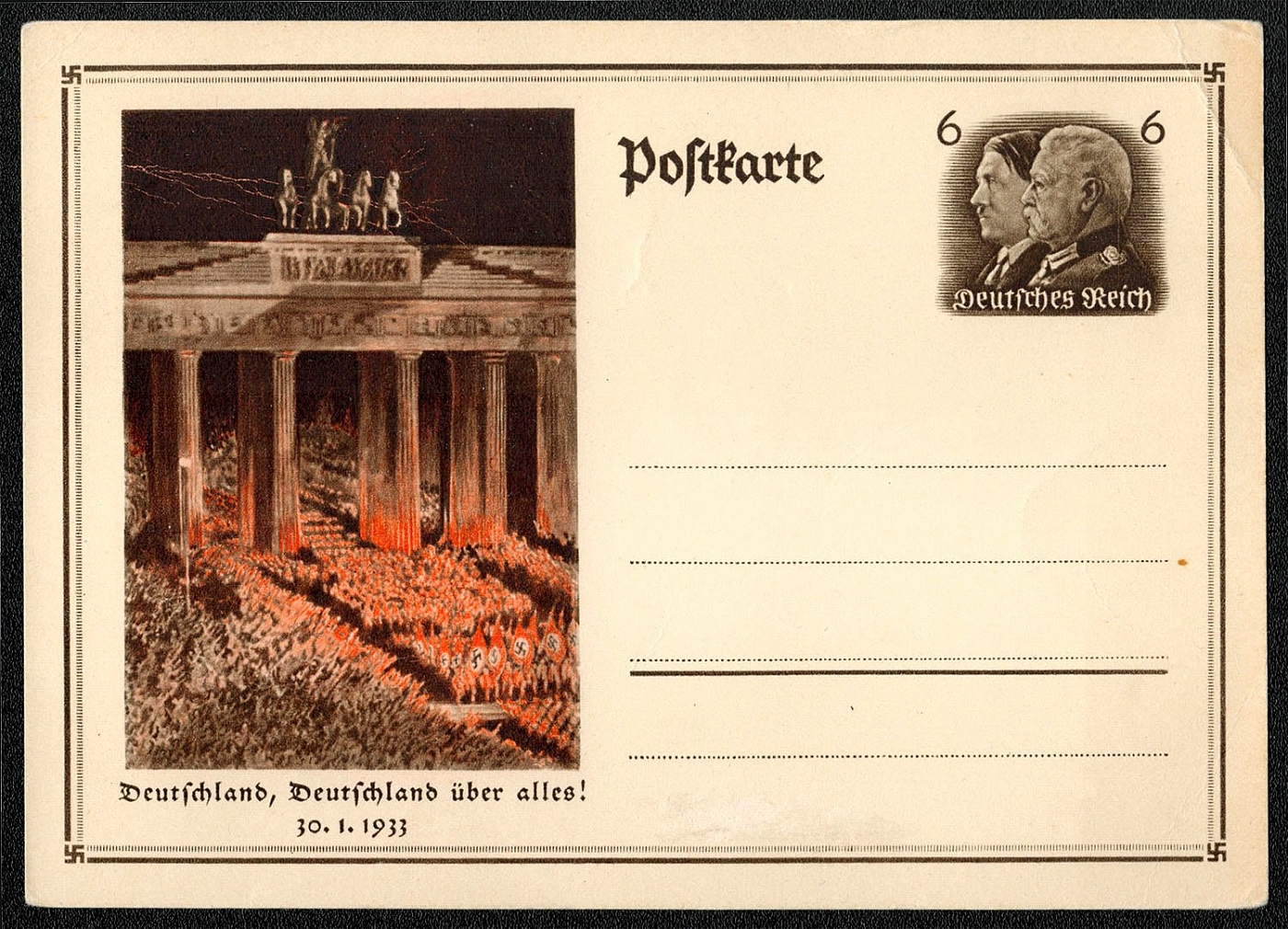
1934 Germany, Germany Above All!
(Germany, Germany Above All!) In Commemoration of the First Anniversary of Hitler’s Assumption of Power. The imprinted stamp on this official post card (Michel P 250) portrays von Hindenburg in uniform and Hitler in mufti. (This is the only time the Reichsprasident and Reichskanzler appeared on a stamp together.) The cachet depicts the Sturmabteilung torchlight parade through the Brandenburg Gate on the night of 30 January 1933, when Hitler was appointed Reichskanzler. (From a photograph by Heinrich Hoffman.) The card was issued 29 January 1934 and remained valid until 31 December 1935.
Sold for:
$5
473
$5
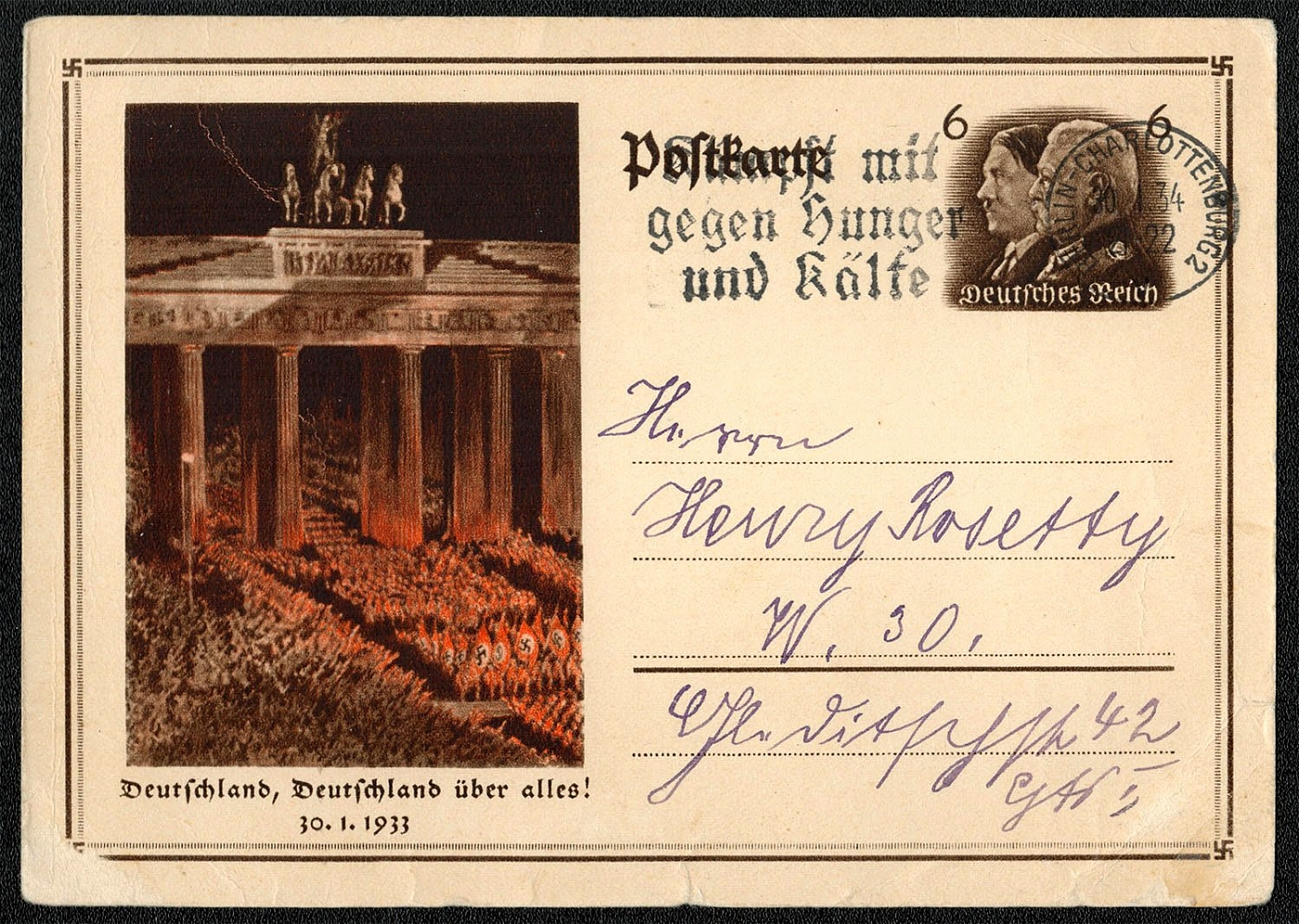
1934 Postally used card dated 30 January in Berlin-Charlottenburg, and cancelled Fight Against Hunger and Cold.
Postally used card dated 30 January 1934 in Berlin-Charlottenburg, and cancelled Fight Against Hunger and Cold.
Sold for:
$5
474
$5
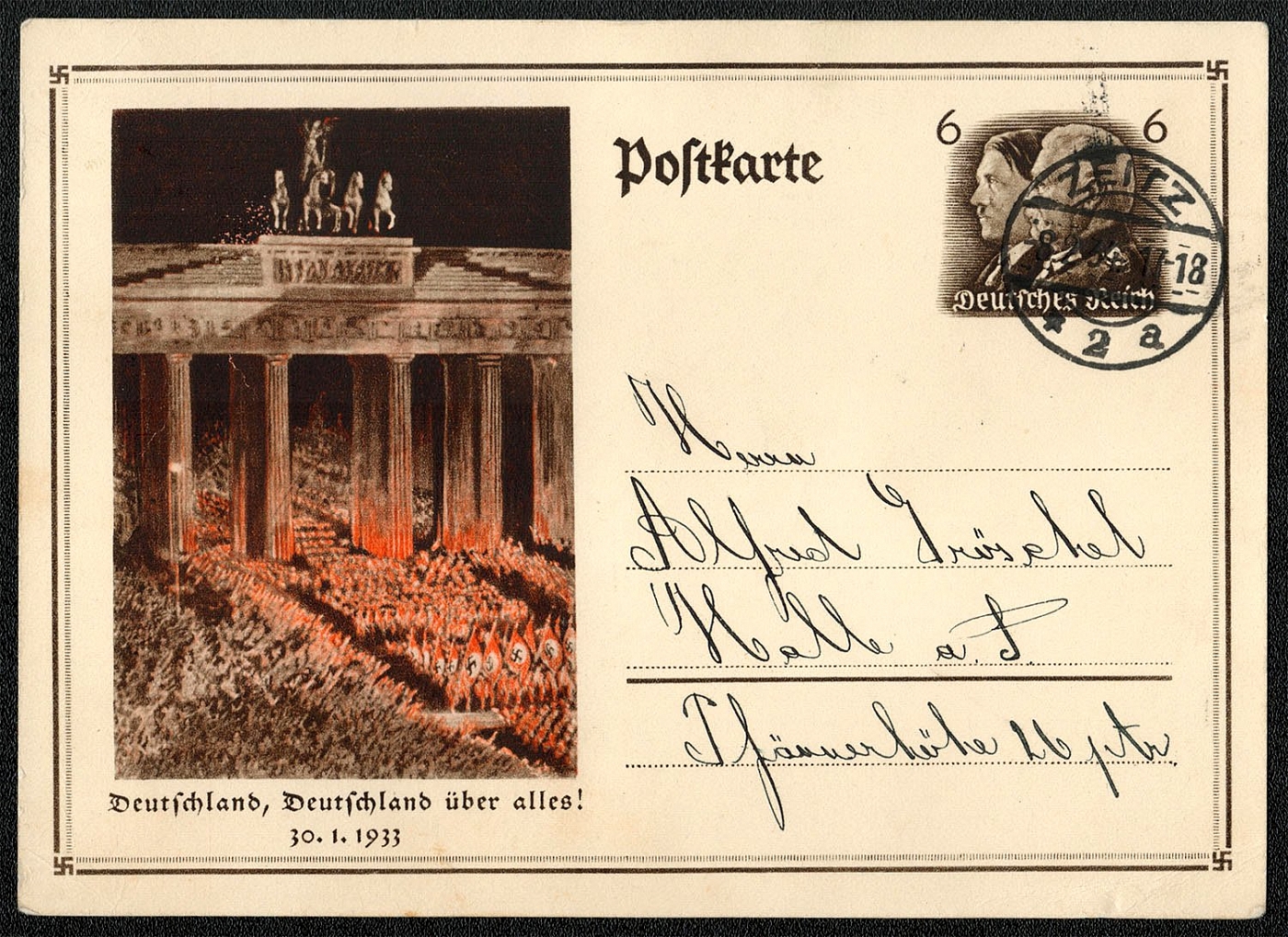
1934 Postally used card dated 8 February in Zeitz, a district of Halle (Saar)
Postally used card dated 8 February 1934 in Zeitz, a district of Halle (Saar)
Sold for:
$5
475
$5
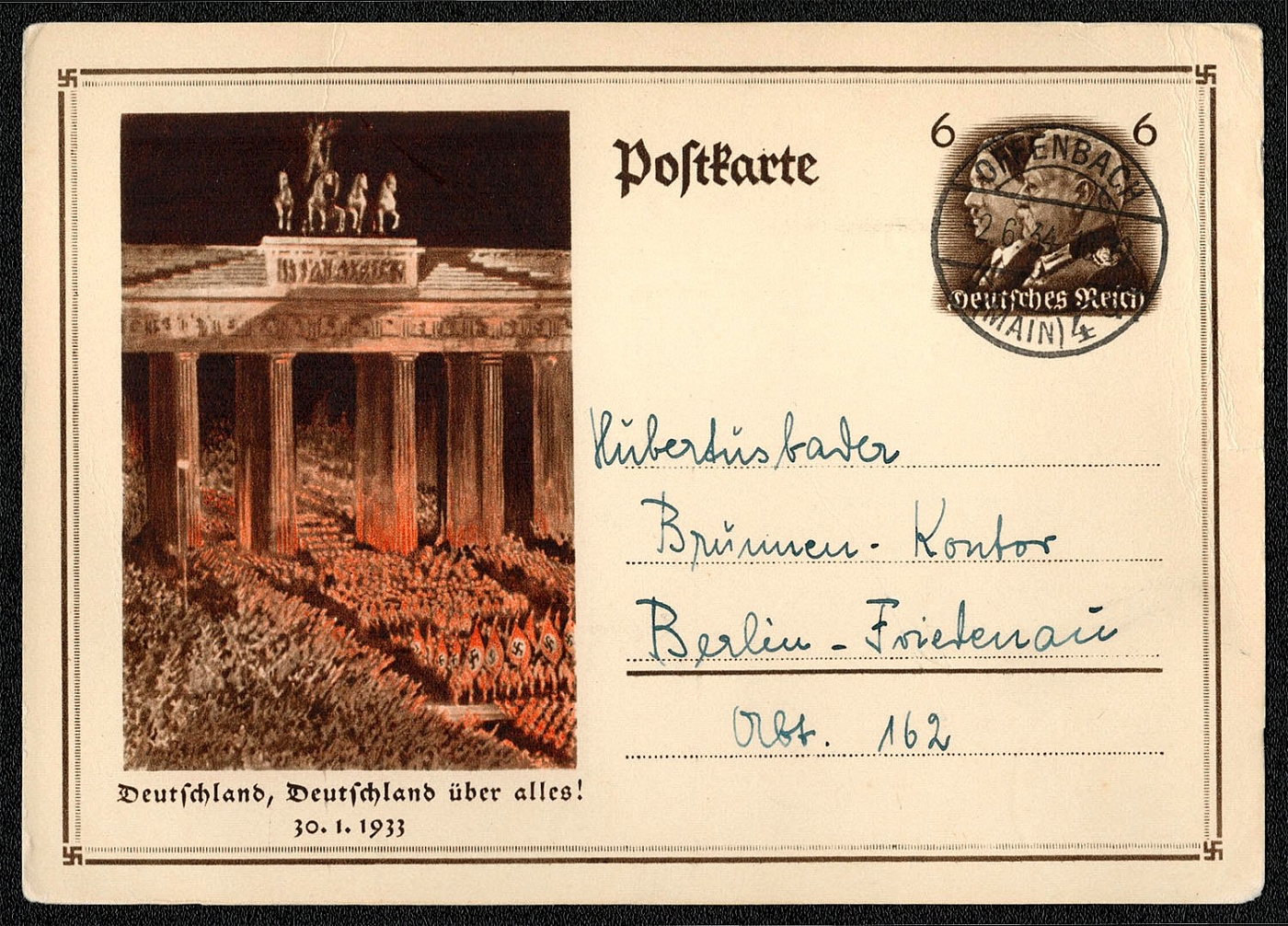
1934 Postally used card Posted 2 June in Offenbach am Main
Michel P 250 Issued 29 January 1934 Special postal card commemorating Hitler’s seizure of power on 30 January 1933. Pictured is the N.S.D.A.P. torchlight parade through Brandenburg Gate in Berlin. Posted 2 June 1934 in Offenbach am Main, an industrial city in Hesse, on the left bank of the Main River just east of Frankfurt am Main. Long noted for its tanning and leather goods industry, Offenbach had a population of 82,000 in the 1930s. It was rebuilt after heavy damage in World War II.
Sold for:
$5
476
$8

1934 Worker, Chimneys and Flags
Michel P 251 issued 30 April 1934 for May Day, a German Nationaler Feiertag (National Holiday) akin to our Labor Day.
Sold for:
$8
477
$5
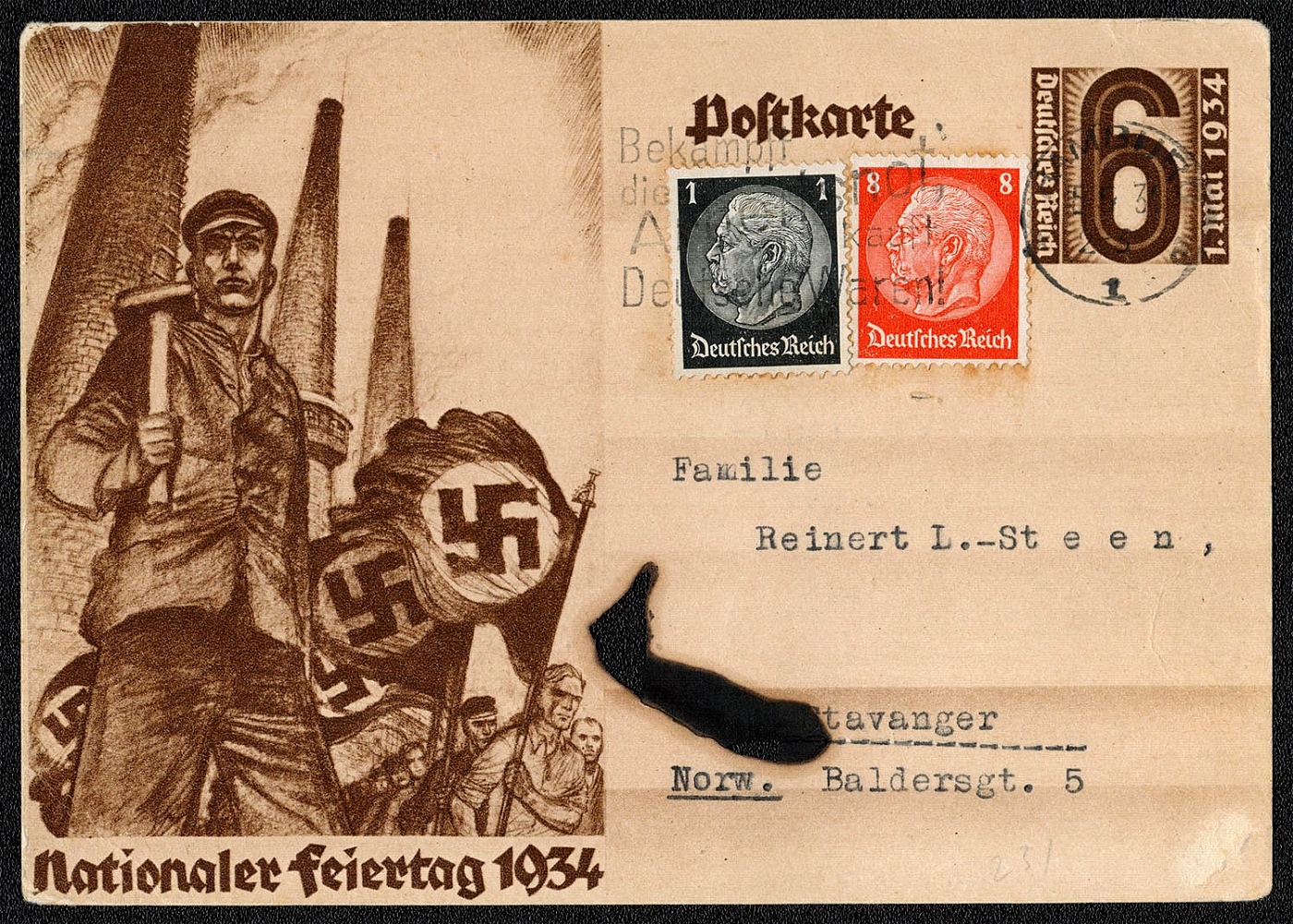
1934 Worker, Chimneys and Flags card was posted in Hamburg on 16 may to Norway which required the additional franking of Sc 415 and 420
card was posted in Hamburg on 16 may 1934 to Norway which required the additional franking of Sc 415 and 420. The slogan cancellation exhorts Germans to struggle, if necessary, to purchase German wares.
Sold for:
$5
478
$5
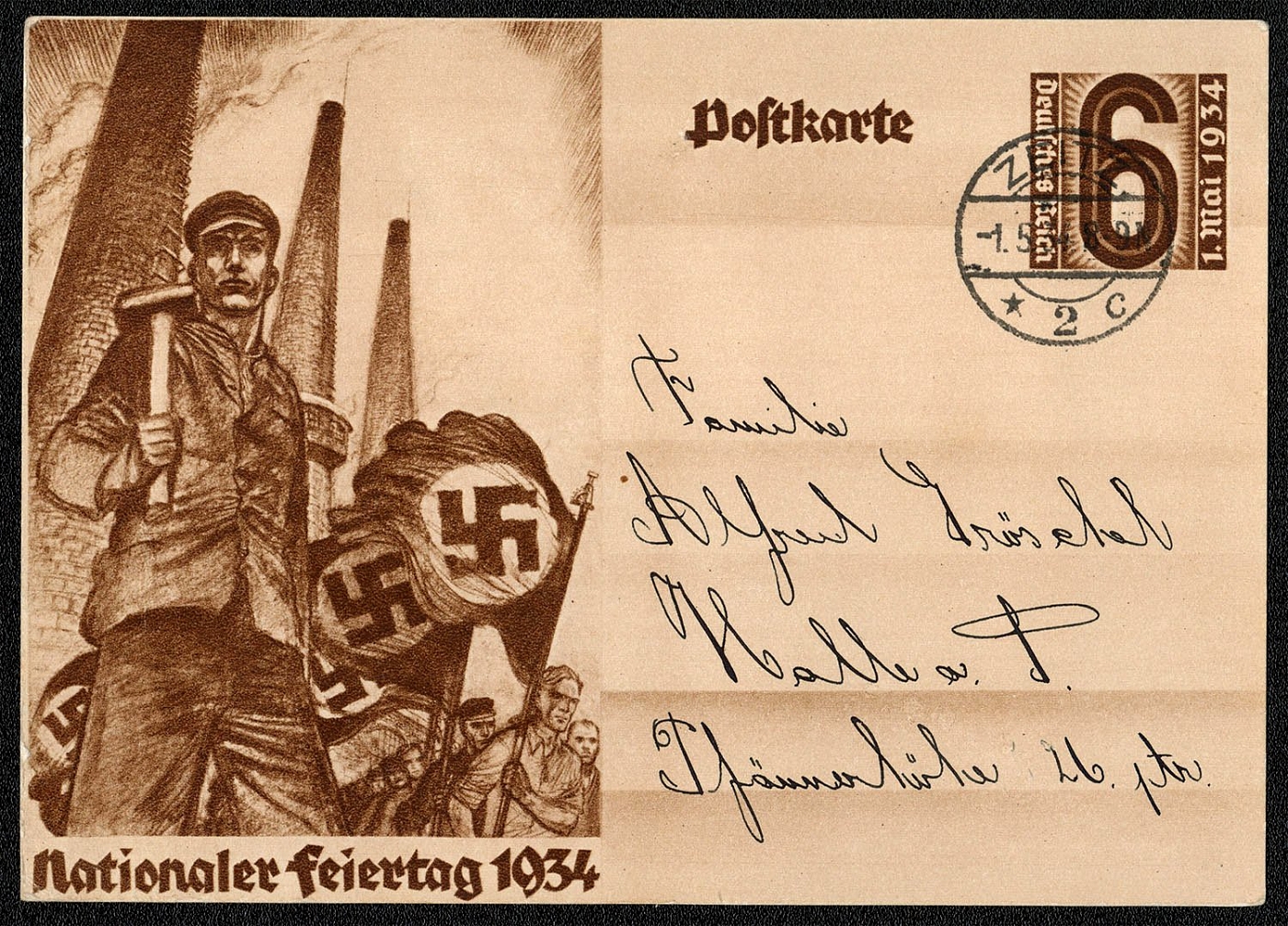
1934 Worker, Chimneys and Flags card was posted 1 May in Zeitz
card was posted 1 May 1934 in Zeitz, a small manufacturing town in the district of Halle on the Weisse Elster River, 21 miles south southwest of Leipzig.
Sold for:
$5
479
$5
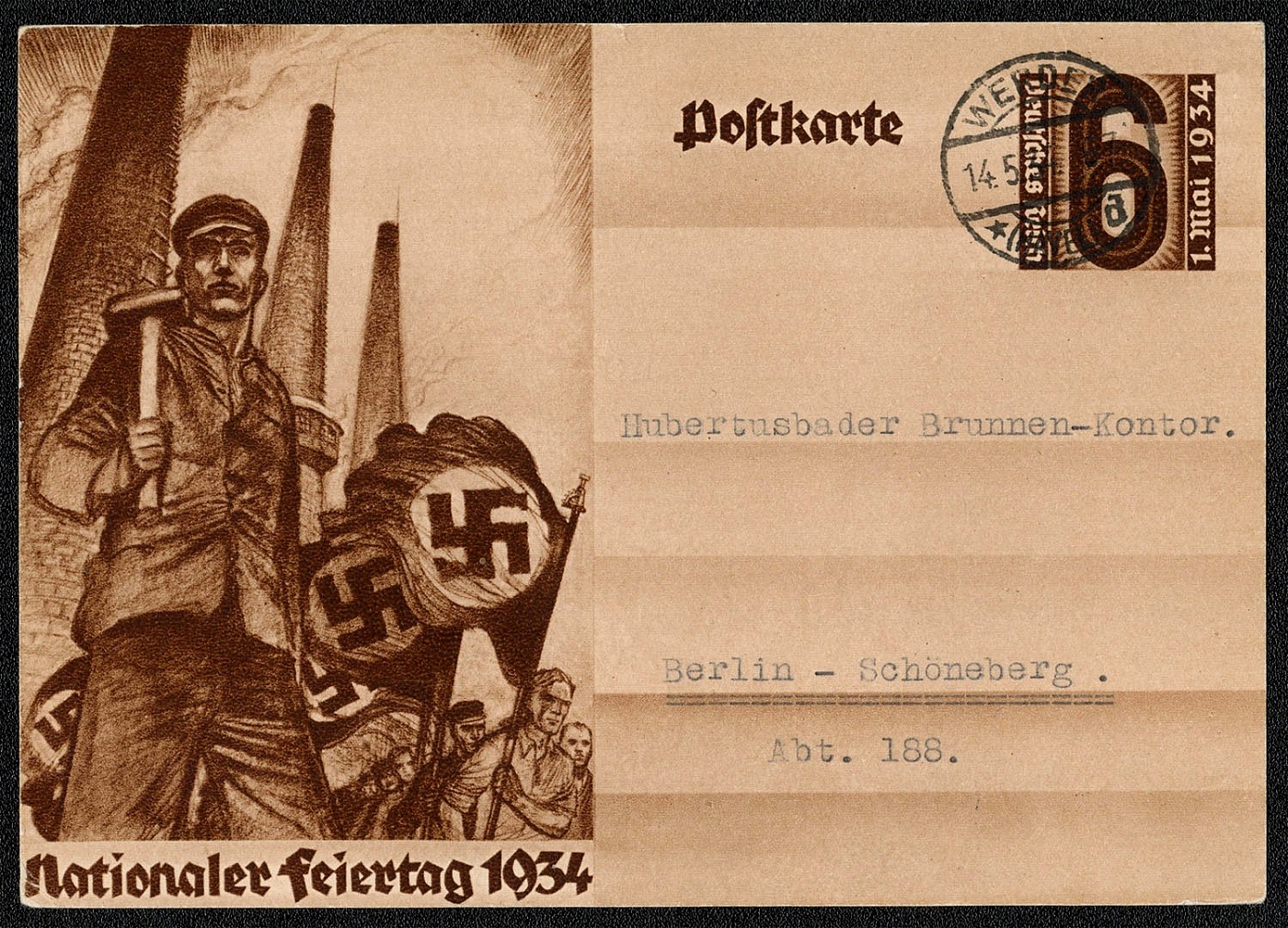
1934 Worker, Chimneys and Flags card mailed from Werder (Havel) on 14 May
Michel P 251 issued 30 April 1934 mailed from Werder (Havel) on 14 May 1934. Werder is a small town situated on the River Havel about 6 miles south of Potsdam.
Sold for:
$5
480
-
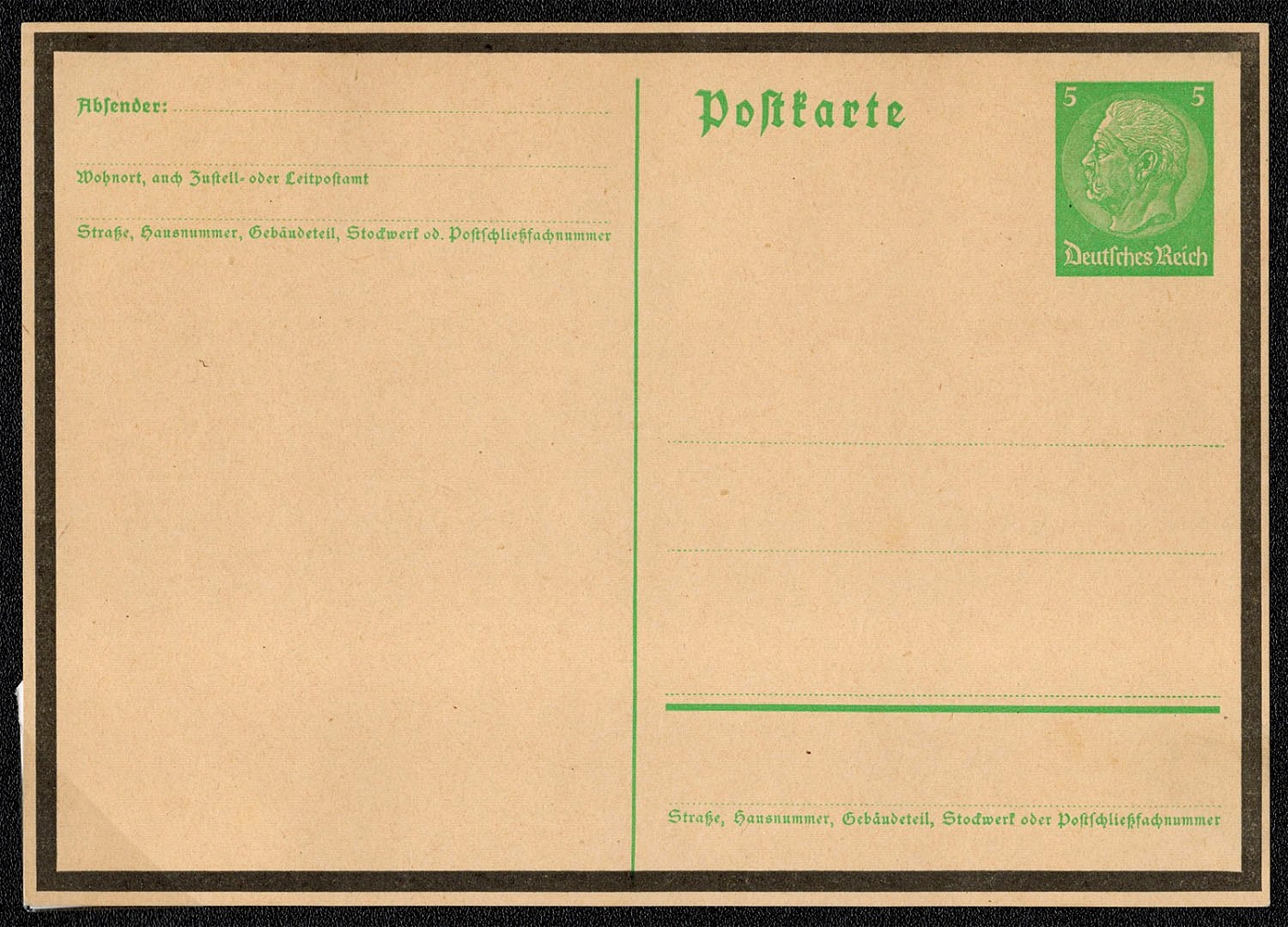
1934 Special Mourning Postal Cards issued in Fall 1934 honoring Paul Hindenburg
Special Mourning Postal Cards issued in Fall 1934 honoring Paul Ludwig Hans Anton von Beneckendorff und von Hindenburg, (Born October 2, 1847 in Posen, Prussia, died August 2, 1934 in Neudeck.) Above: Michel P234a (fawn colored card stock). Above right: Michel P235a (fawn colored card stock). Lower right: Michel P235b (cream colored card stock) posted in Halle (Saar) 30 October 1934. The cancellation (Werdet Rundfunkteilnehmer) urges the public to become “radio participants.”
Unsold
481
-
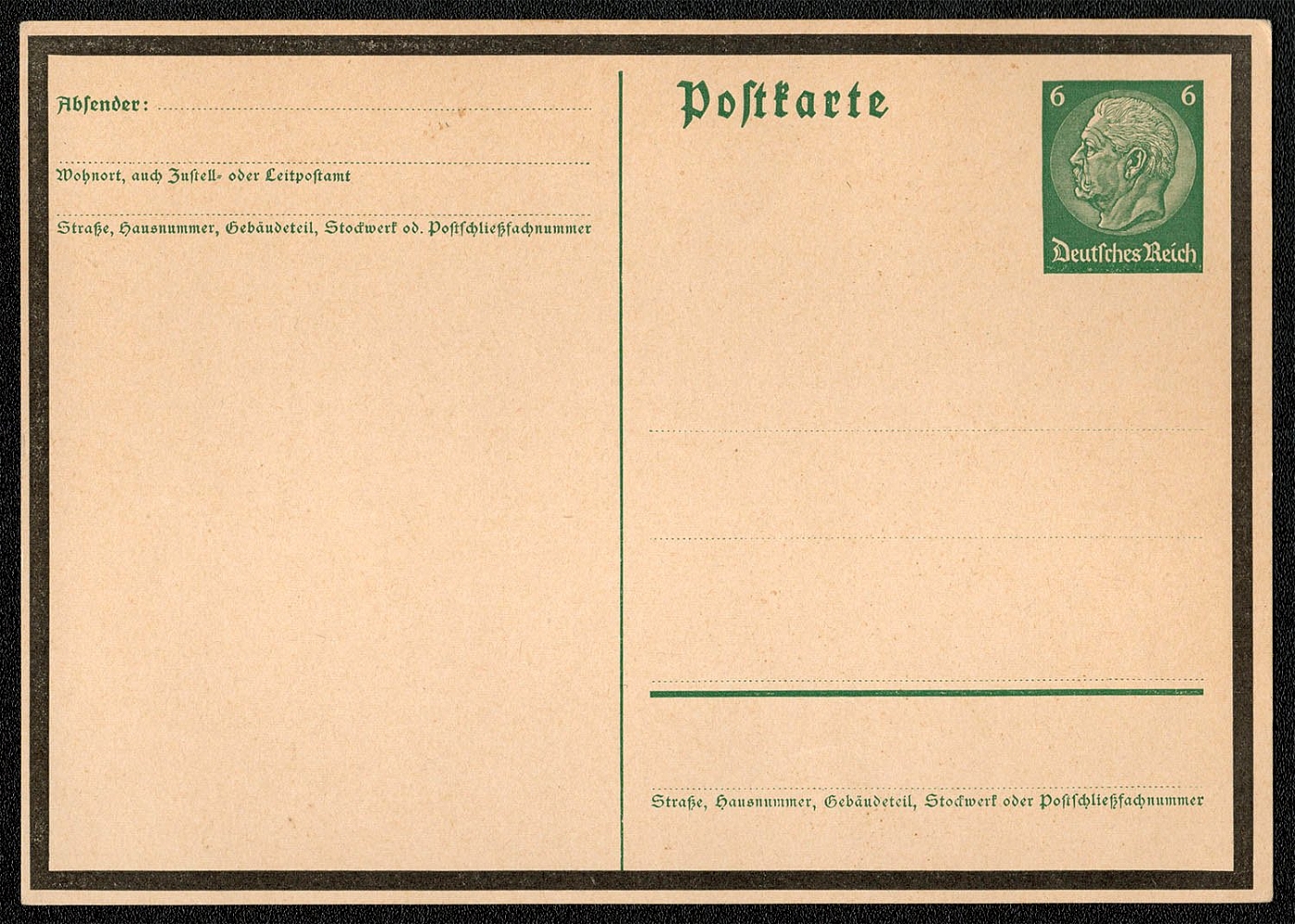
1934 Special Mourning Postal Cards issued in Fall 1934 honoring Paul Hindenburg (2)
Special Mourning Postal Cards issued in Fall 1934 honoring Paul Ludwig Hans Anton von Beneckendorff und von Hindenburg, (Born October 2, 1847 in Posen, Prussia, died August 2, 1934 in Neudeck.) Above: Michel P234a (fawn colored card stock). Above right: Michel P235a (fawn colored card stock). Lower right: Michel P235b (cream colored card stock) posted in Halle (Saar) 30 October 1934. The cancellation (Werdet Rundfunkteilnehmer) urges the public to become “radio participants.”
Unsold
482
-
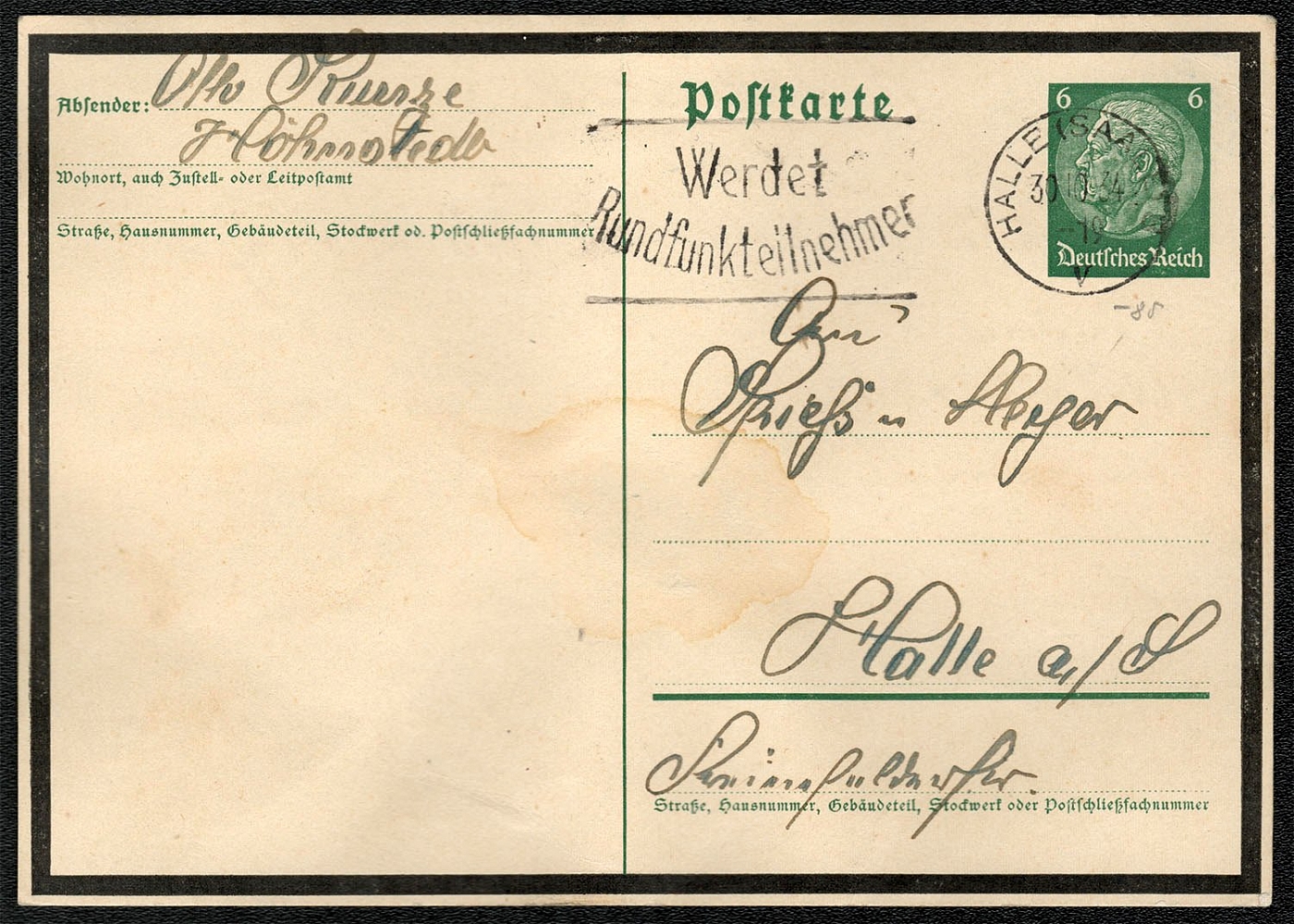
1934 Special Mourning Postal Cards issued in Fall 1934 honoring Paul Hindenburg posted in Halle
1934 Special Mourning Postal Cards issued in Fall 1934 honoring Paul Hindenburg posted in Halle
Unsold
484
-
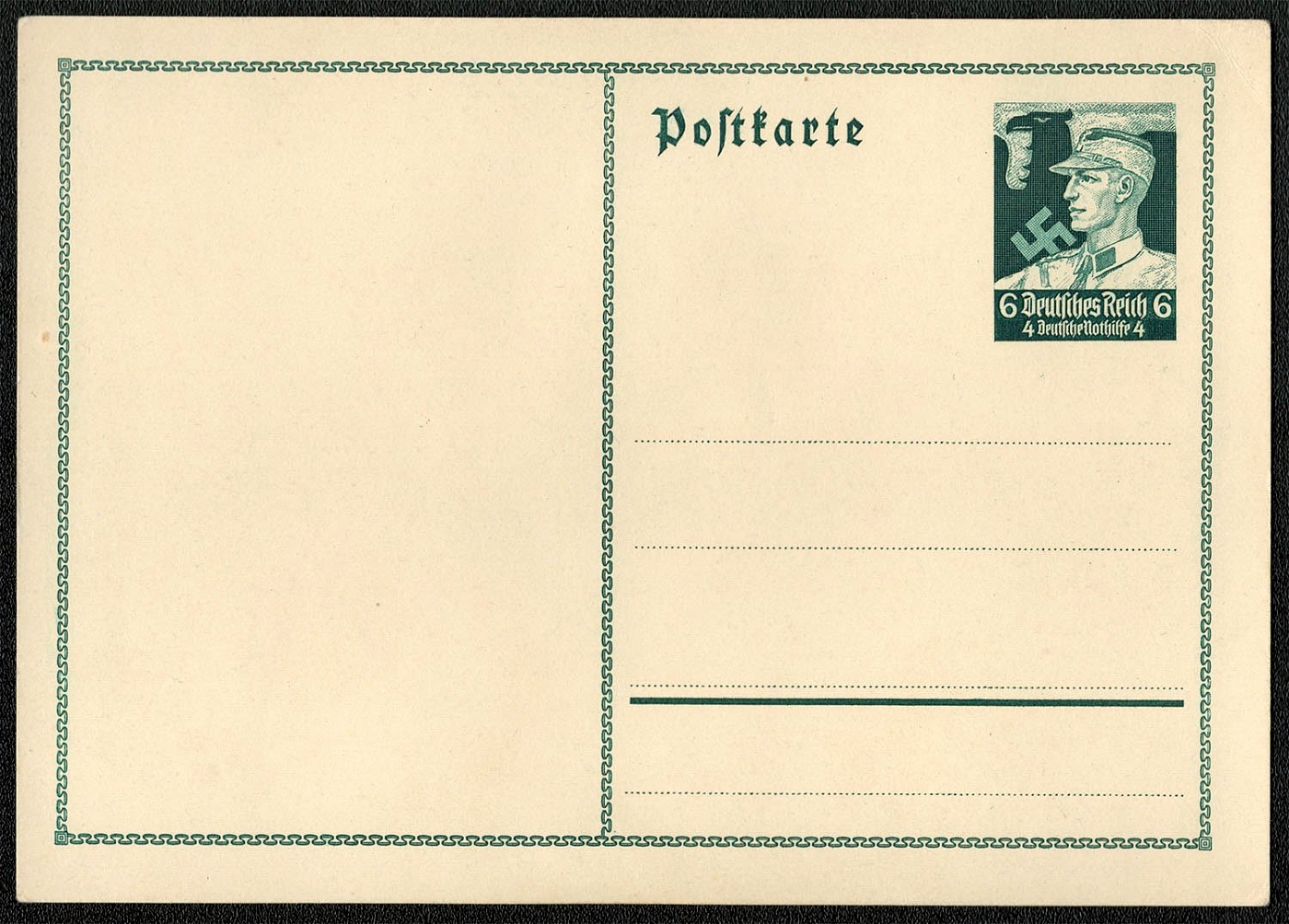
1934 Commemorative Postal Card for the 1934 Winter Aid
Commemorative Postal Card for the 1934 Winter Aid (Michel P 253) Issued at the same time as the Nothilfe stamps, the postal card depicts an SA trooper with an eagle and swastika background. The stamp was designed by Professor Spiegel. Right: On September 1934, the Prussian Ministry of Interior authorized a state lottery, with prizes totaling 150,000 marks, for the benefit of the Nothilfe. Tickets were sold through the lottery offices at 50 pfennig each. The lottery ticket measured 180 mm by 290 mm, and the sheet was folded to act as an envelope to hold a joined pair of post cards. The envelope was then sealed by machine imprint. The post card was not available from post offices, but went on sale 29 December 1934. The post cards were advertised as having a special new imprinted stamp designed by Emmy Glintzer to aim at the collectors’ market. What was not made clear to the public was that only one of the joined cards had the imprinted stamp, and only one in ten of the double cards had the single imprinted stamp. So, in addition to being a money lottery, it was also a postal stationery lottery. Officially, eighty-two different views were used in the series, but one hundred four are known to exist, the extras being rare misprints. The drawing took place on 20 March 1935 with a top prize of five thousand marks.
Unsold
485
$5
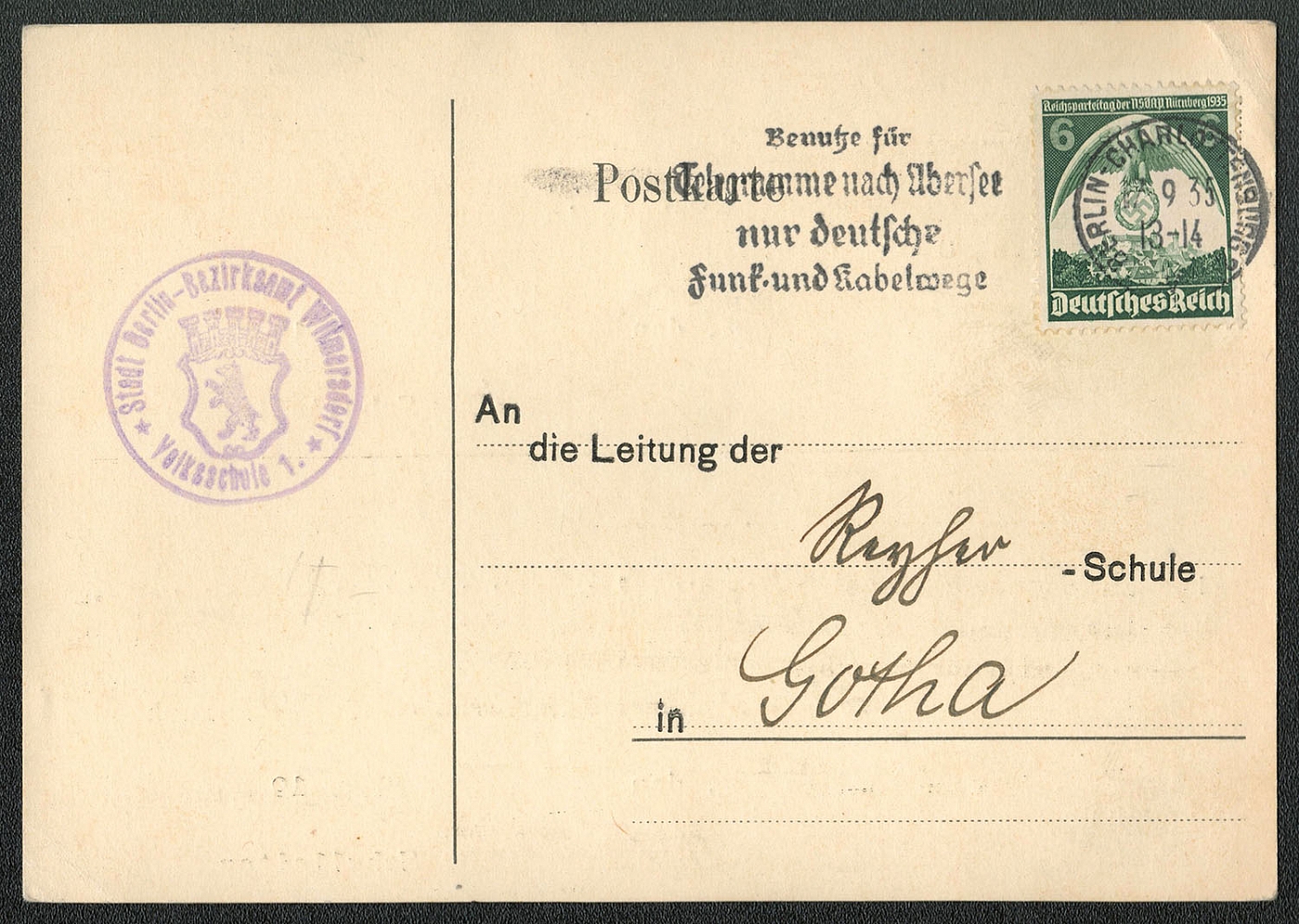
486
-
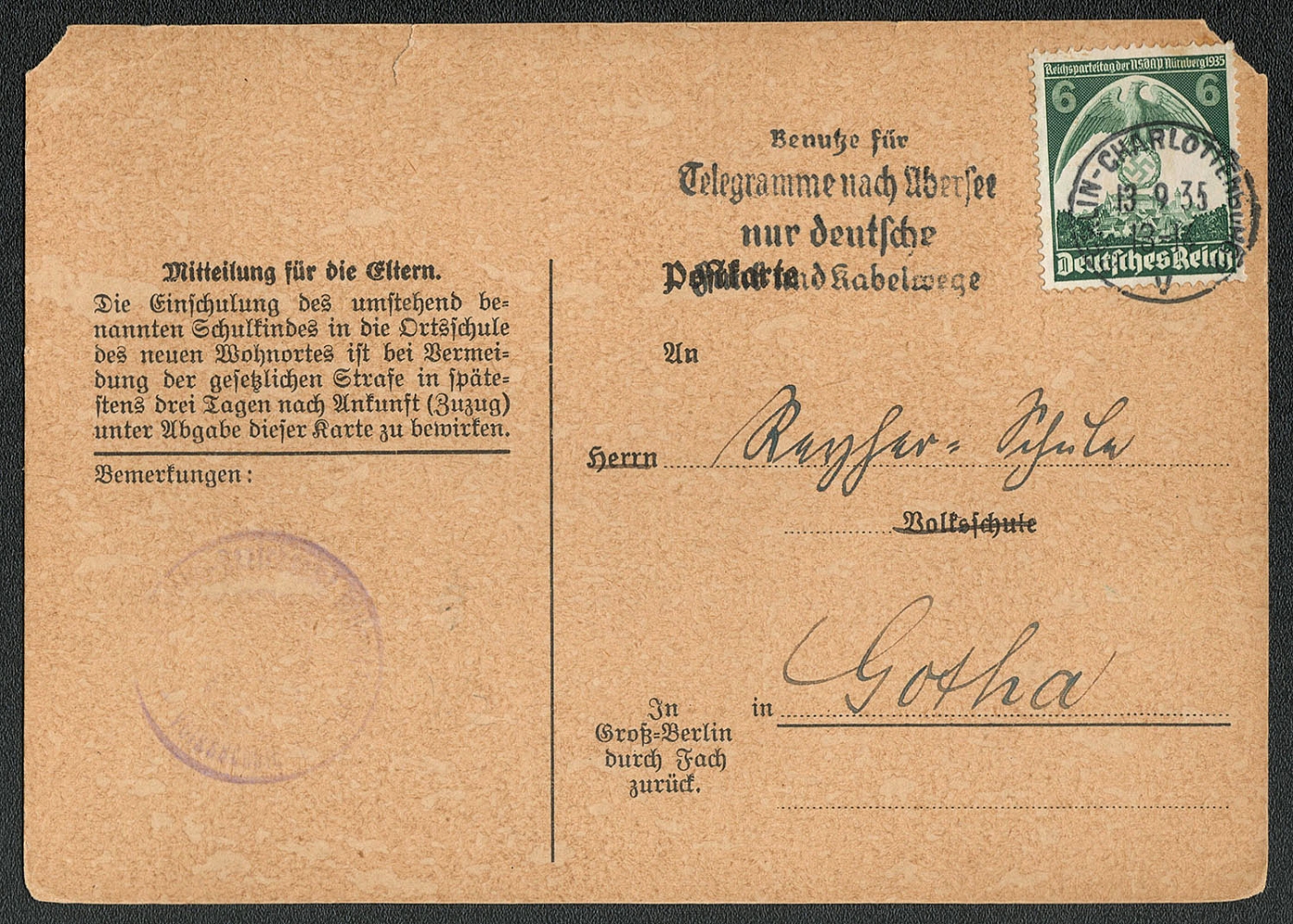
487
$5
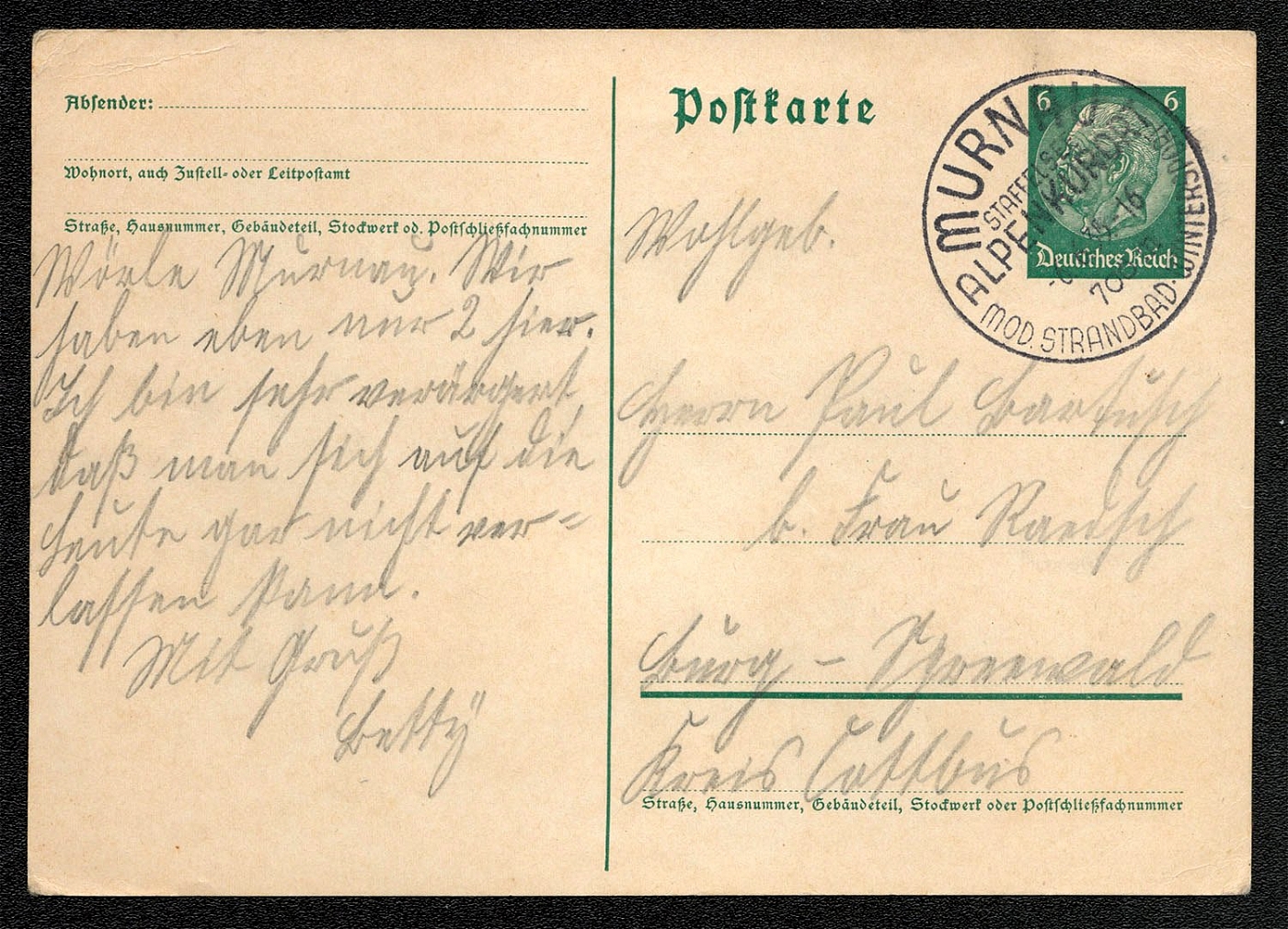
1935 Michel Р 226 posted from Murnau 6 June
Murnau is an old village in the Bavarian Alps at an altitude of 2257 feet. It had approximately 3300 inhabitants in 1935, and was noted for its Alpine Cures (Alpenkurort) and visited for its fashionable swimming pools (strandbad) and winter sports. It lies amid picturesque surroundings, bounded on the south by a beautiful chain of mountains. A little to the west lies the Staffelsee, a charming lake at an altitude of 2125 feet with indentated banks and richly wooded islets.
Sold for:
$5
488
$5
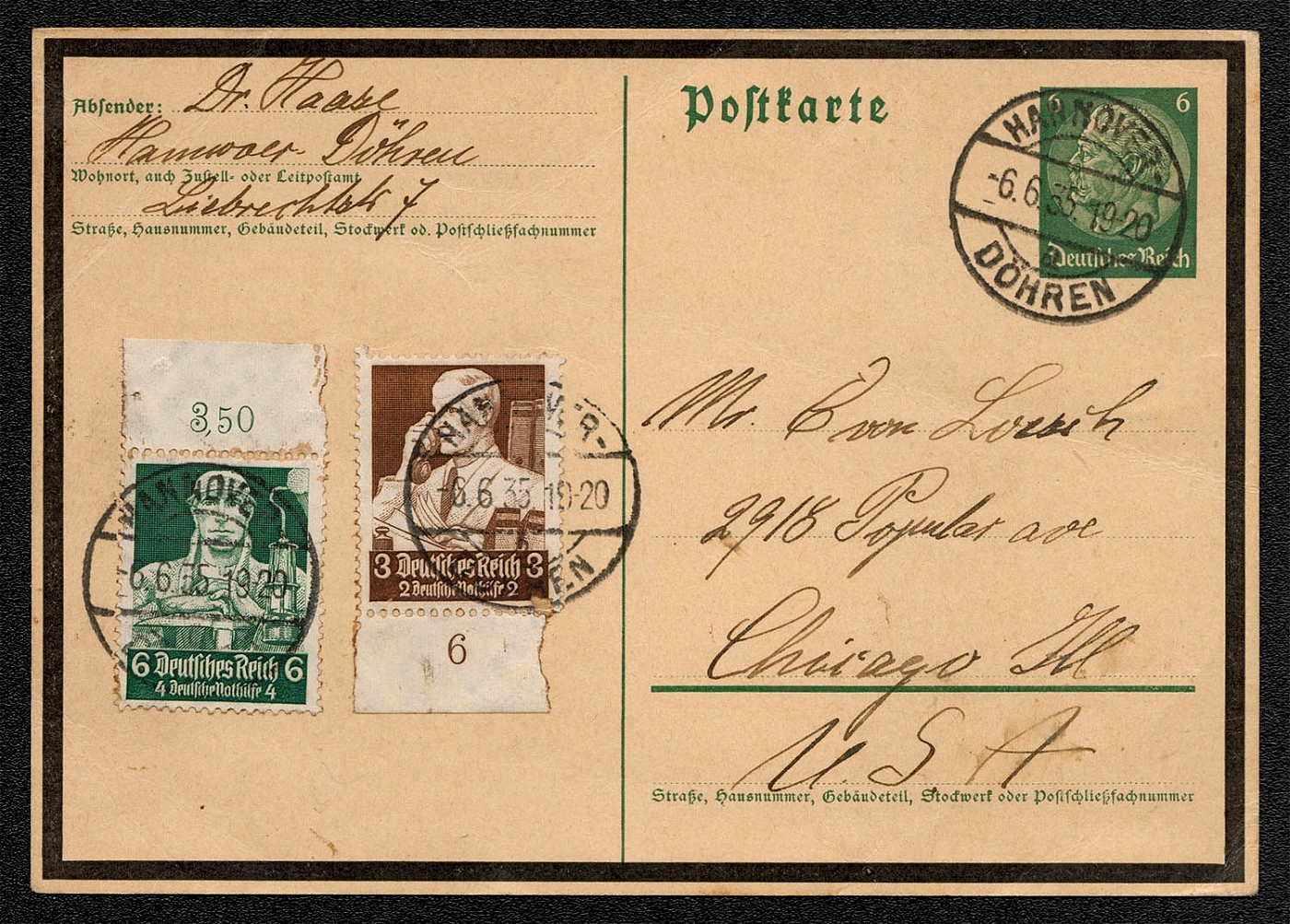
1935 Used card additionally franked with Scott B59 and B62 mailed to the United States
Michel P 235a, Hindenburg (gray green) on buff card stock. A philatelically prepared, but postally used card additionally franked with Scott B59 and B62 mailed to the United States from Hannover Dohren 6 June 1935.
Sold for:
$5
489
$12
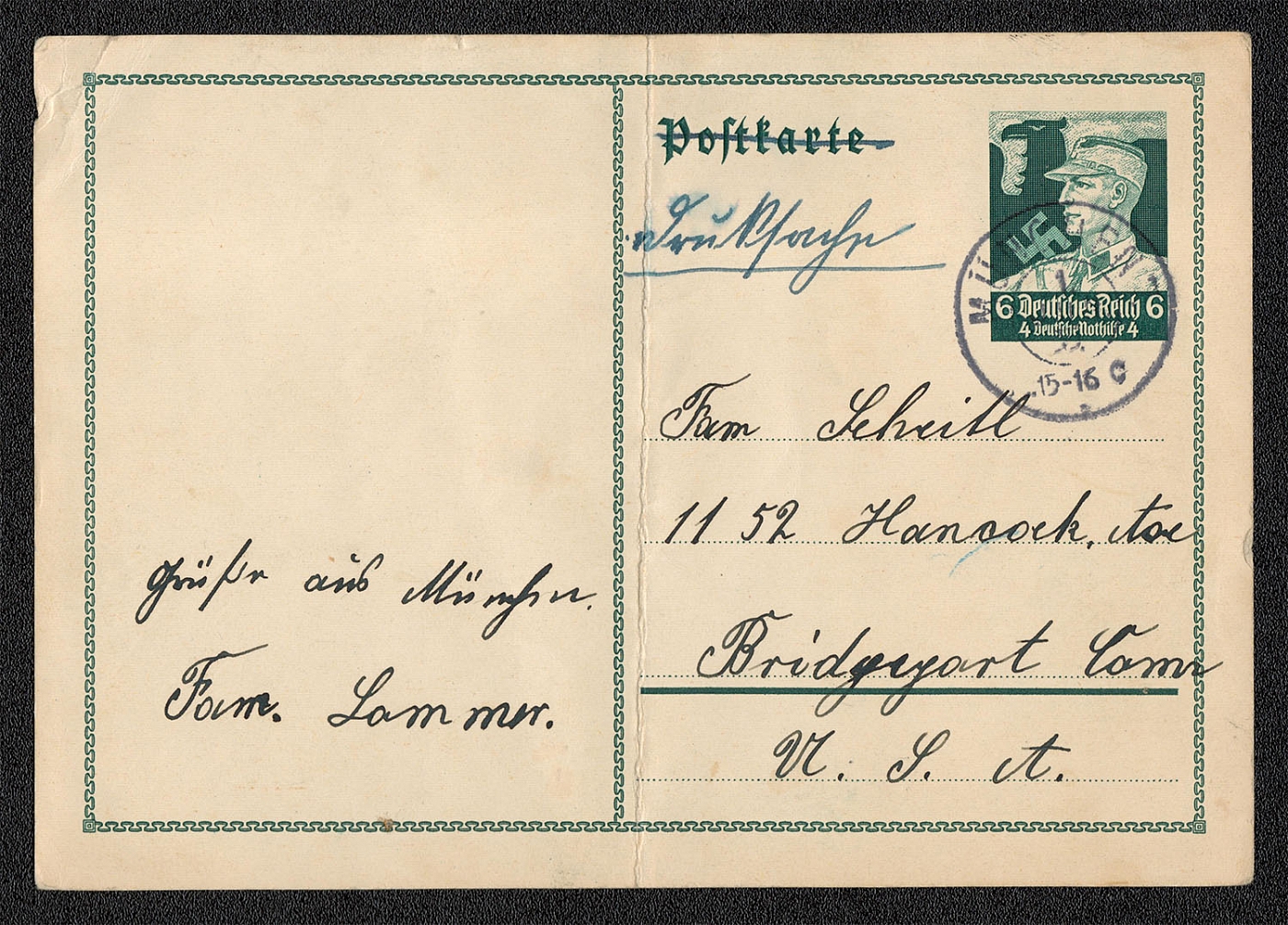
1935 Mailed to the US from Munich
"Commemorative card for the German Winter Relief. Michel P 253 issued 5 November 1934. SA Mann (green). Mailed to the US from Munich in 1935 with sender’s modification, i.e., claiming a Printed Matter rate rather than the more costly Post Card rate. The sender’s handwritten “ Greetings from Munich"" met printed matter postal regulations as per the Postordnung of 1929: “Printed matter may be in the form of cards—the cards should not have the imprint ‘‘Postkartef however they must be the size of such a card and the same thickness.” According to the 1929 regulations, post cards with a maximum of five words could be mailed as Drucksachenkarten (Printed Matter Cards). Changes or additions could be made by typewriter, rubber stamp, or even handwriting any place on the card, as long as a total of five words were not exceeded. Beyond this, they could not constitute a “unique message.” Greetings and good wishes, etc. were permitted, but not personal messages such as “I’m coming in Sunday.”"
Sold for:
$12
490
-
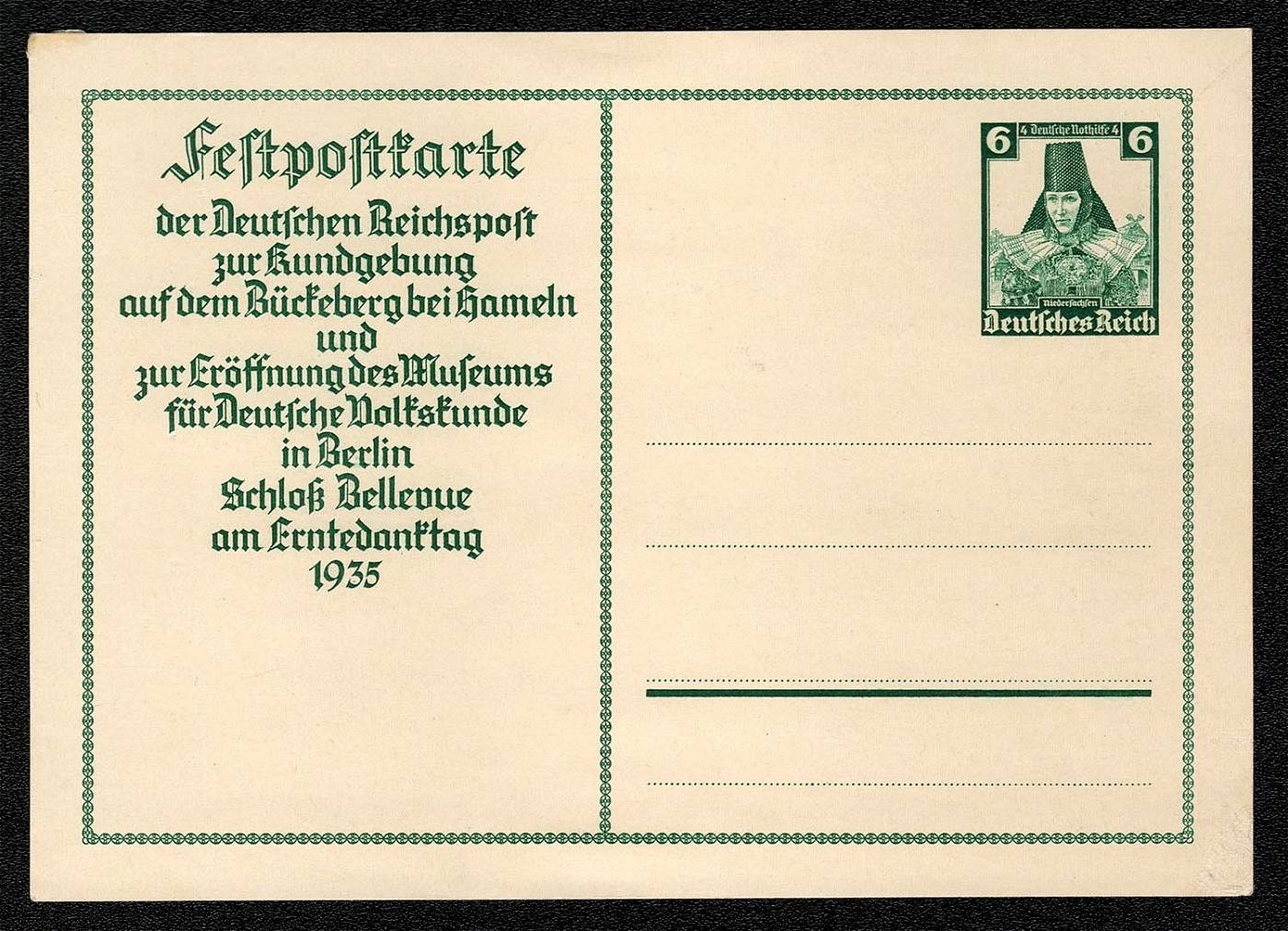
1935 Michel P 255 issued 1 October 1935. Lady in Niedersachsen costume (green)
Commemorative card for the Harvest Day Festival held in Buckeberg with extra charges for the Winter Relief. Michel P 255 issued 1 October 1935. Lady in Niedersachsen costume (green). The inscription on the card reads: The German Reichspost Festival Post Card for the Meeting at Biickeberg by Hameln, and for the Museum for German Folklore in Berlin’s Bellevue Castle on Harvest Day, 1935.
Unsold
491
-
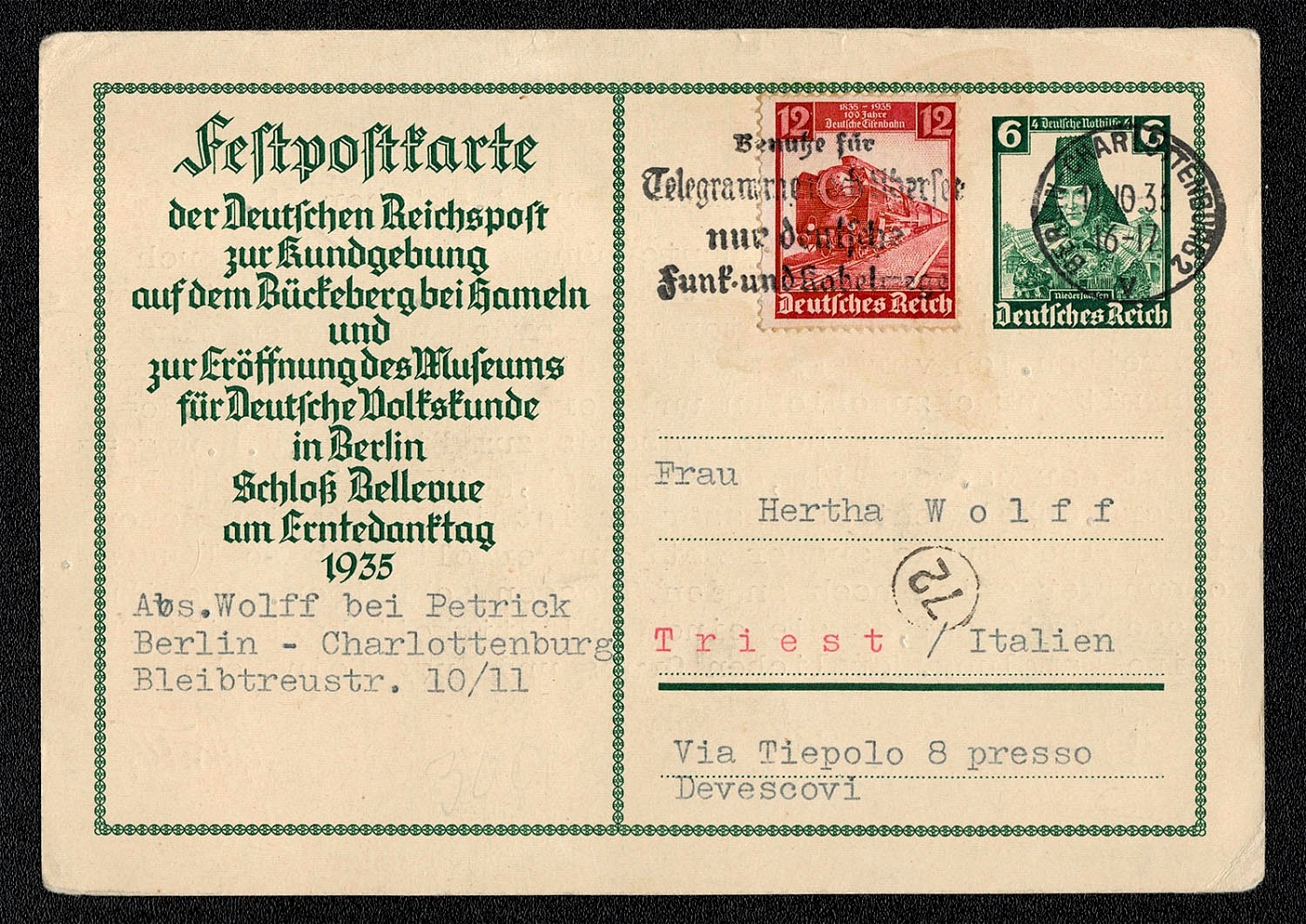
1935 Michel P255 additionally franked with Scott 460 and mailed to Trieste from Berlin-Charlottenburg 2
Michel P255 additionally franked with Scott 460 and mailed to Trieste from Berlin-Charlottenburg 2 11 October 1935. The slogan cancellation For overseas telegrams use only German Radio and Cable.
Unsold
492
$16
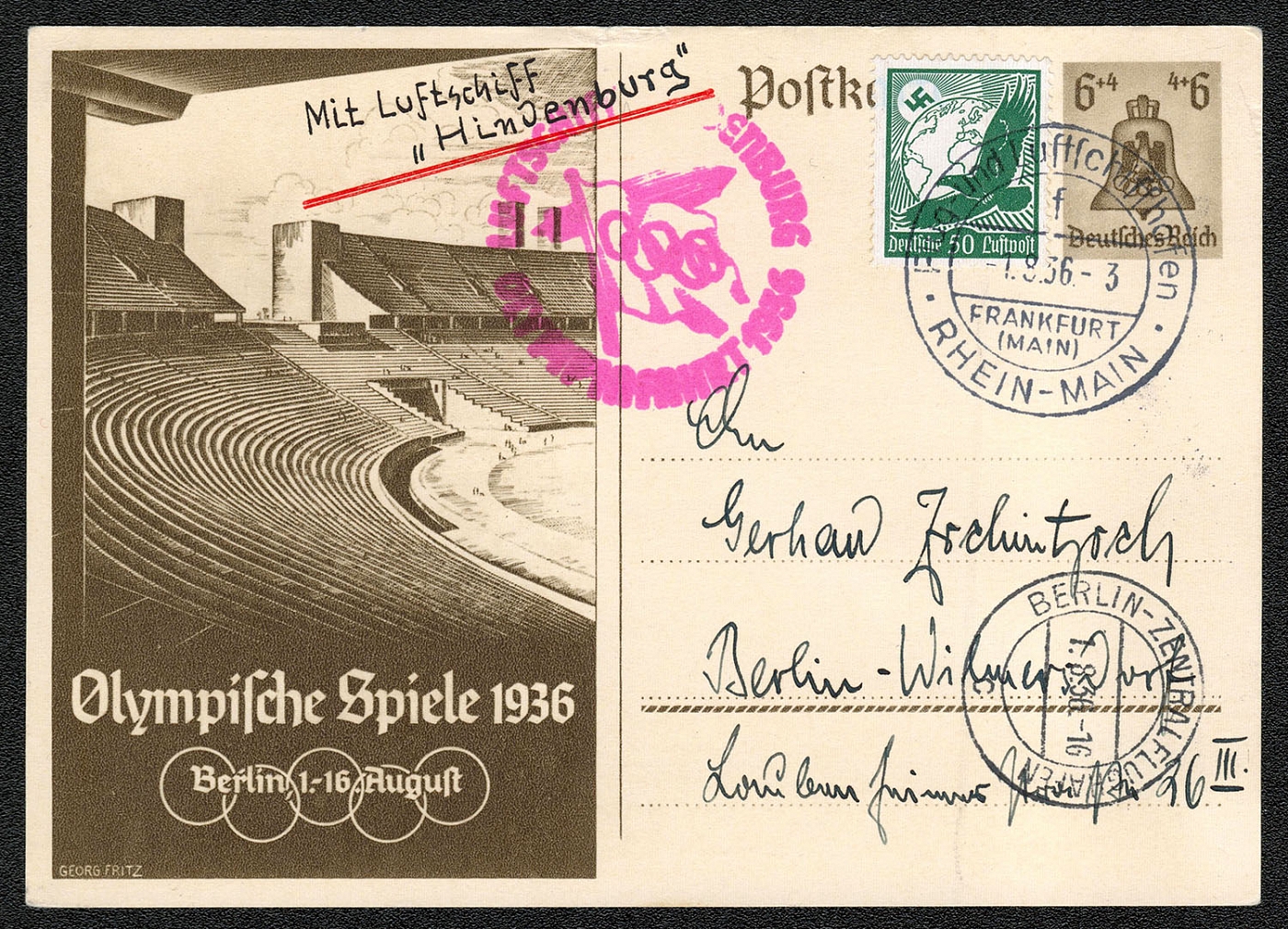
1936 Olympic Games Airmail postcard to Berlin
1936 Olympic Games Airmail postcard to Berlin
Sold for:
$16
493
-
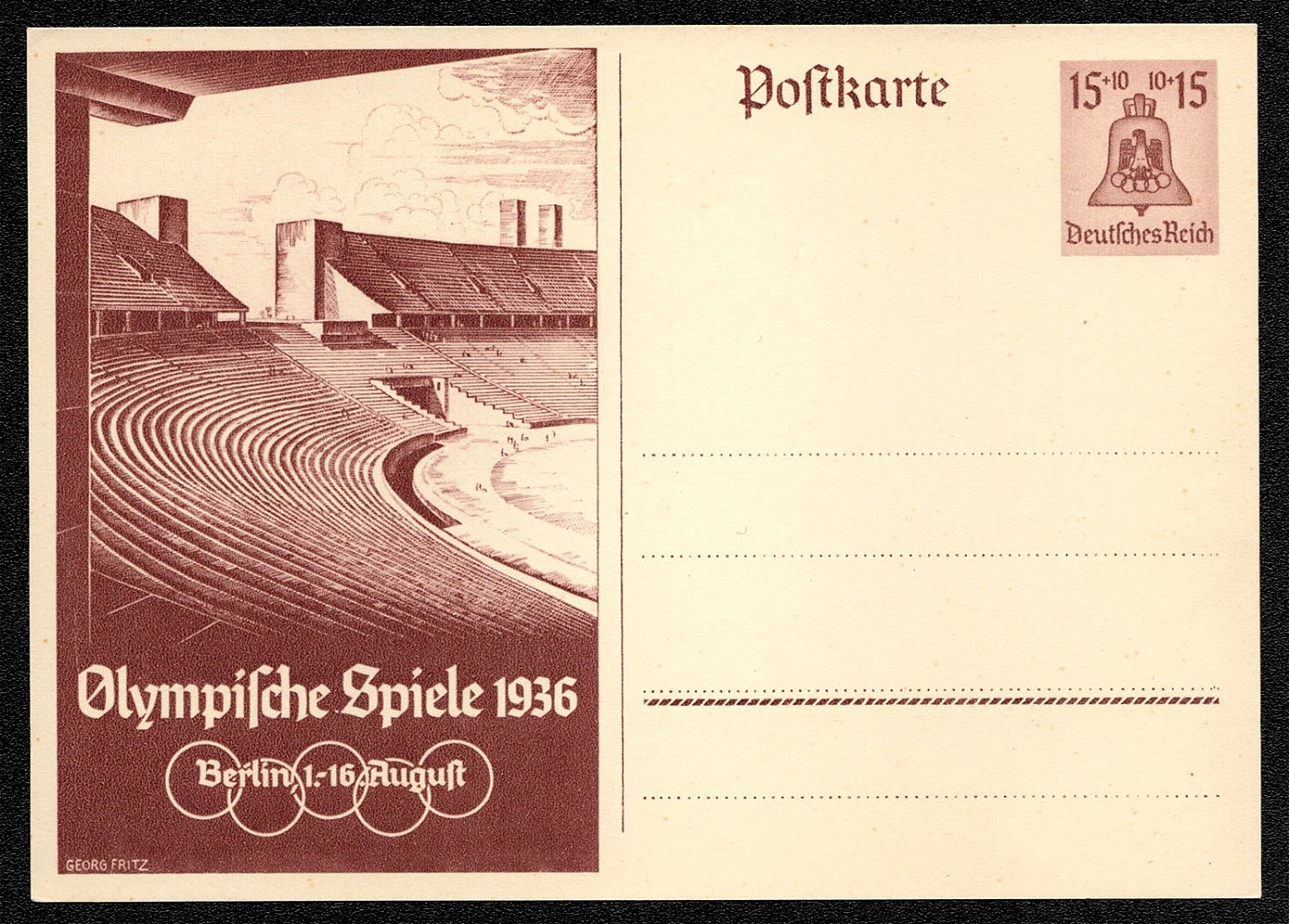
1936 Summer Olympic Games in Berlin
Michel P 260 issued 15 June 1936 for the Olympic Games in Berlin with a CTO “big circle” Olympic Stadium commemorative cancellation dated 1 August 1936 and postally used with a “small circle” Berlin-NW Olympische Spiele slogan cancellation dated 2 August 1936. Pictured is the Olympic Stadium designed by Werner March, “a unique example of officially commissioned architecture that cannot be faulted aesthetically.”* *The Social History of the Third Reich by Richard Grunberger
Unsold
494
$5
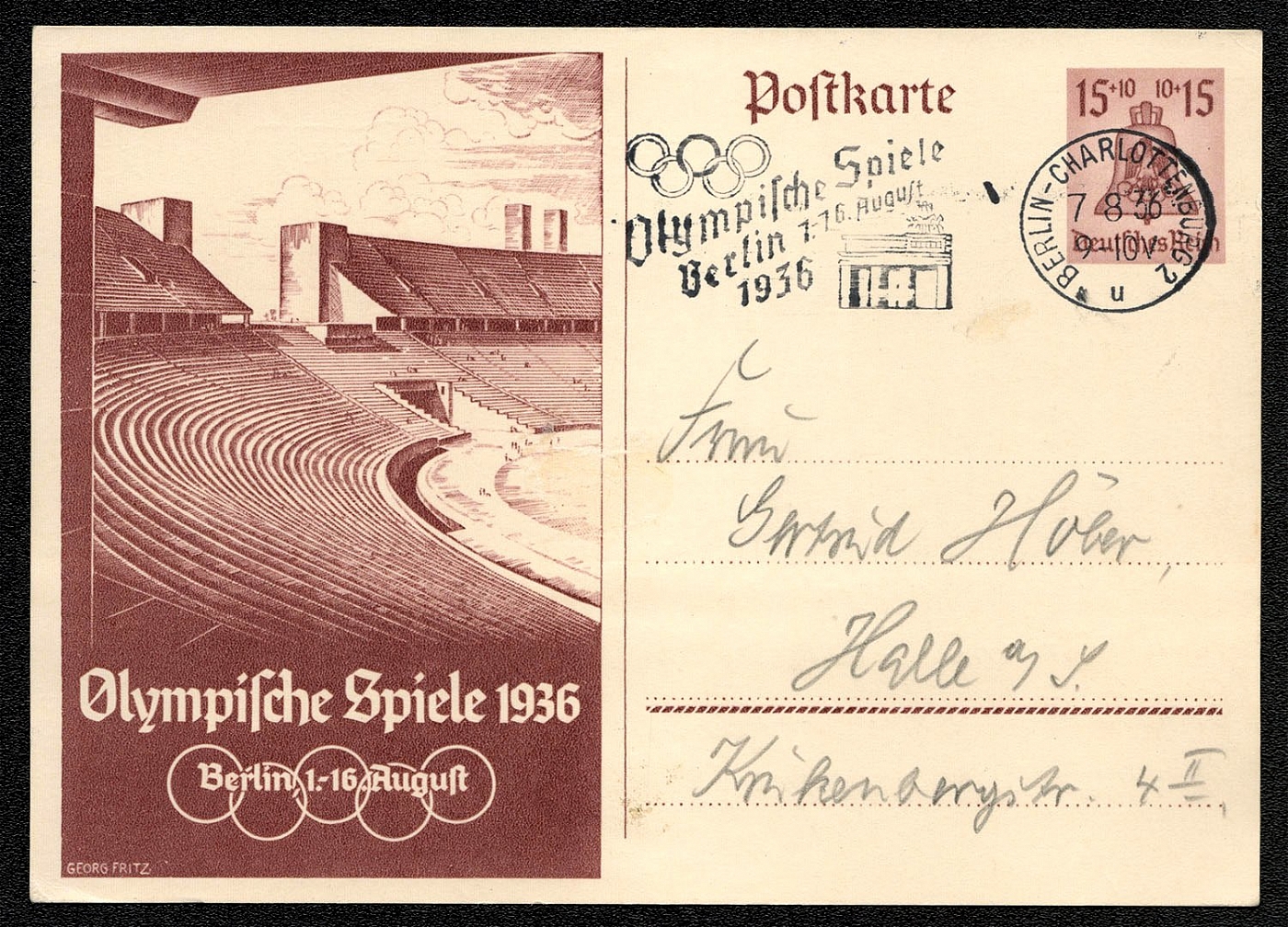
1936 Summer Olympic Games in Berlin, sent to Halle
1936 Summer Olympic Games in Berlin, sent to Halle
Sold for:
$5
495
-
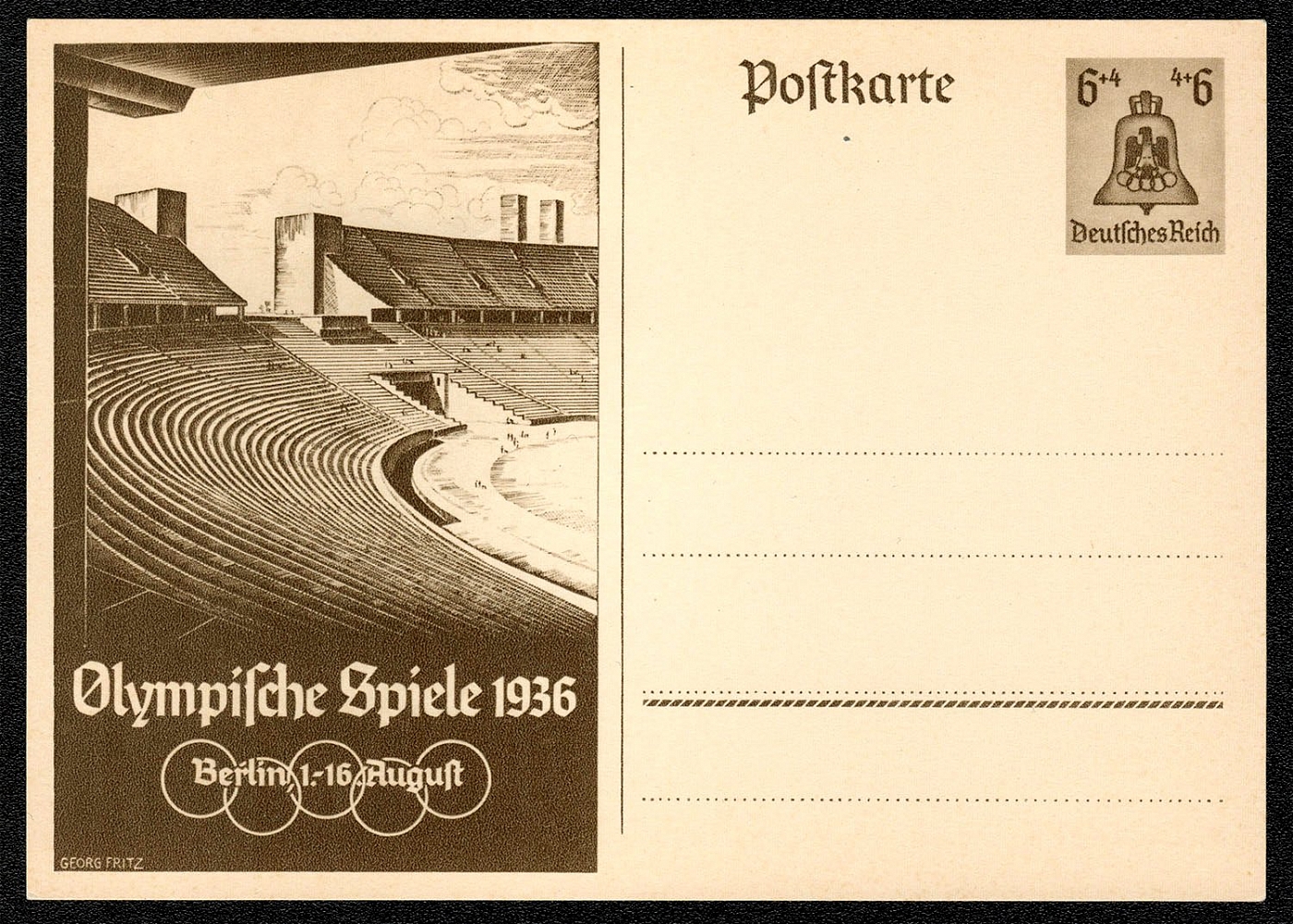
496
$5
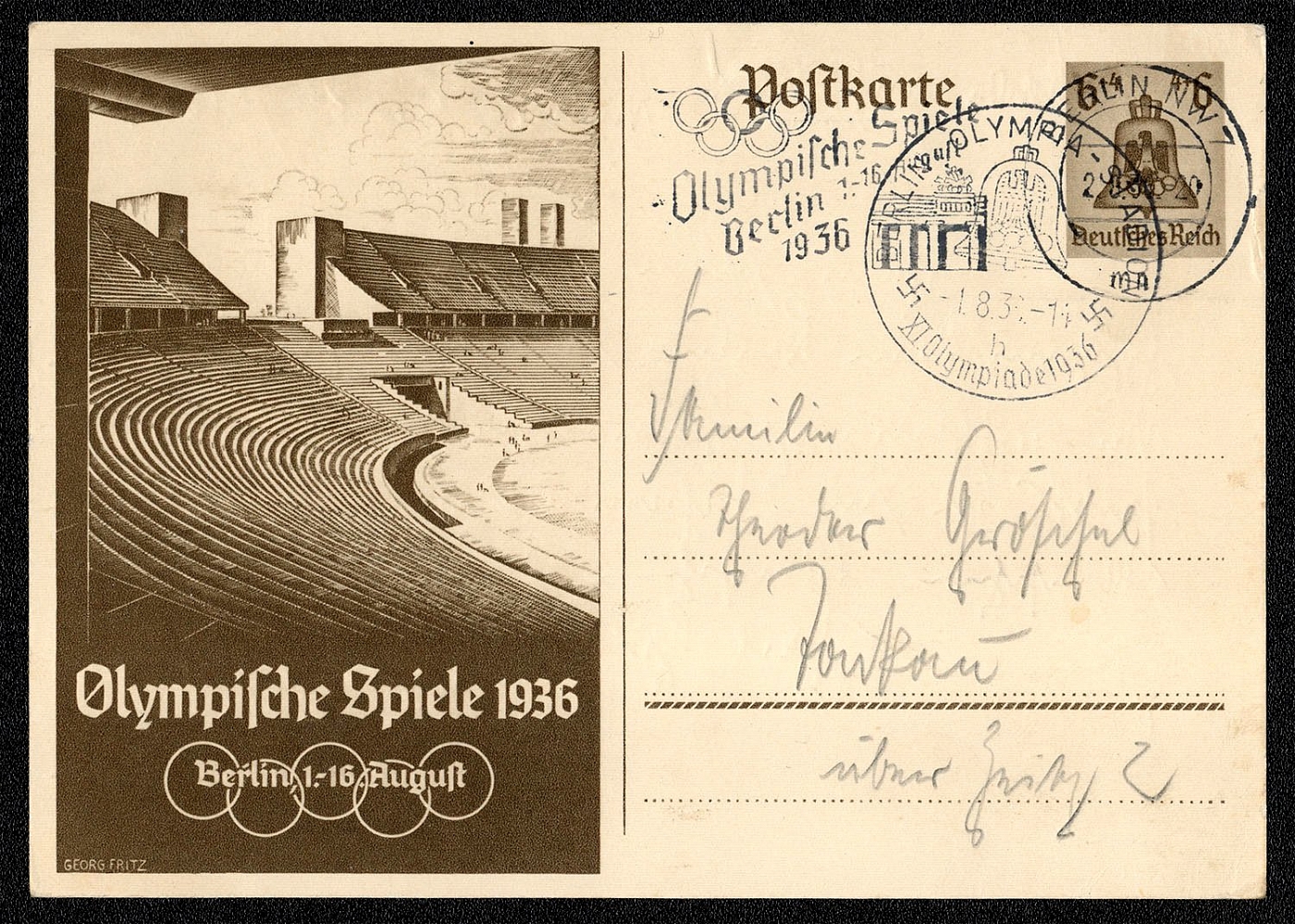
1936 Summer Olympic Games in Berlin postally used with a “small circle”
Michel P 259 issued 15 June 1936 for the Olympic Games in Berlin with a CTO “big circle” Olympic Stadium commemorative cancellation dated 1 August 1936 and postally used with a “small circle” Berlin-NW Olympische Spiele slogan cancellation dated 2 August 1936. Pictured is the Olympic Stadium designed by Werner March, “a unique example of officially commissioned architecture that cannot be faulted aesthetically.”
Sold for:
$5
497
-
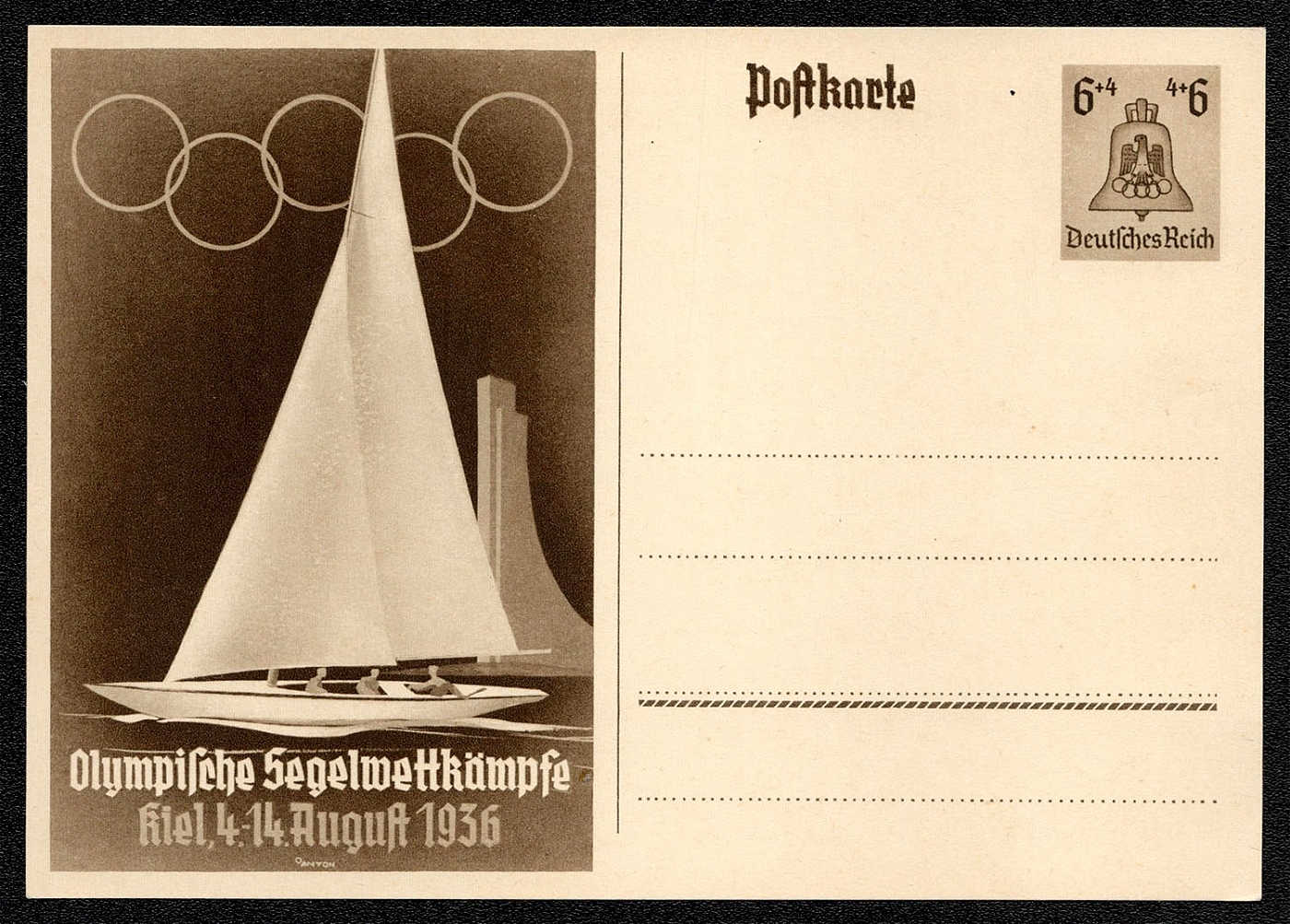
498
$5
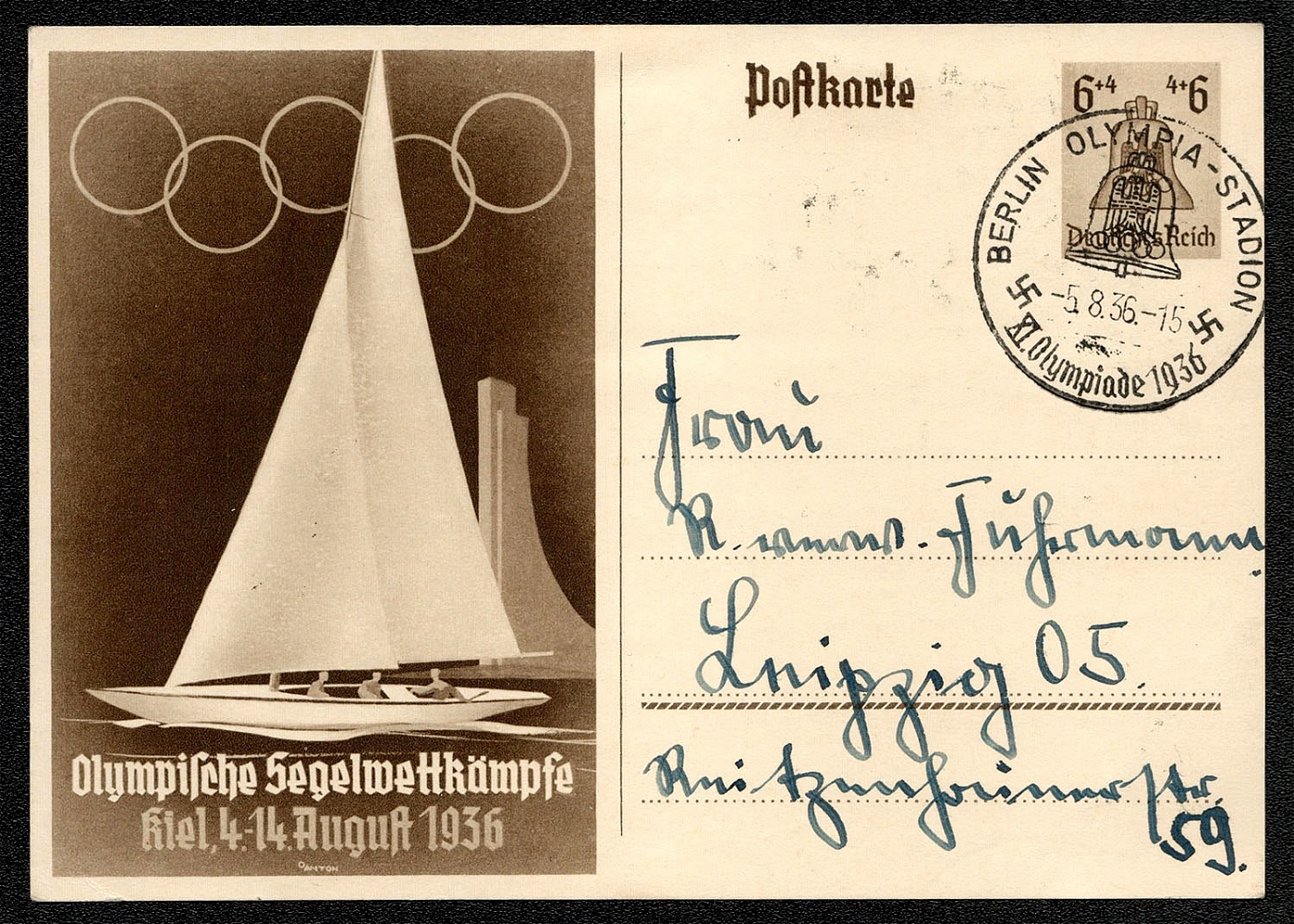
1936 Olympic sailing competitions. Berlin - Leipzig
1936 Olympic sailing competitions. Berlin - Leipzig
Sold for:
$5
499
-
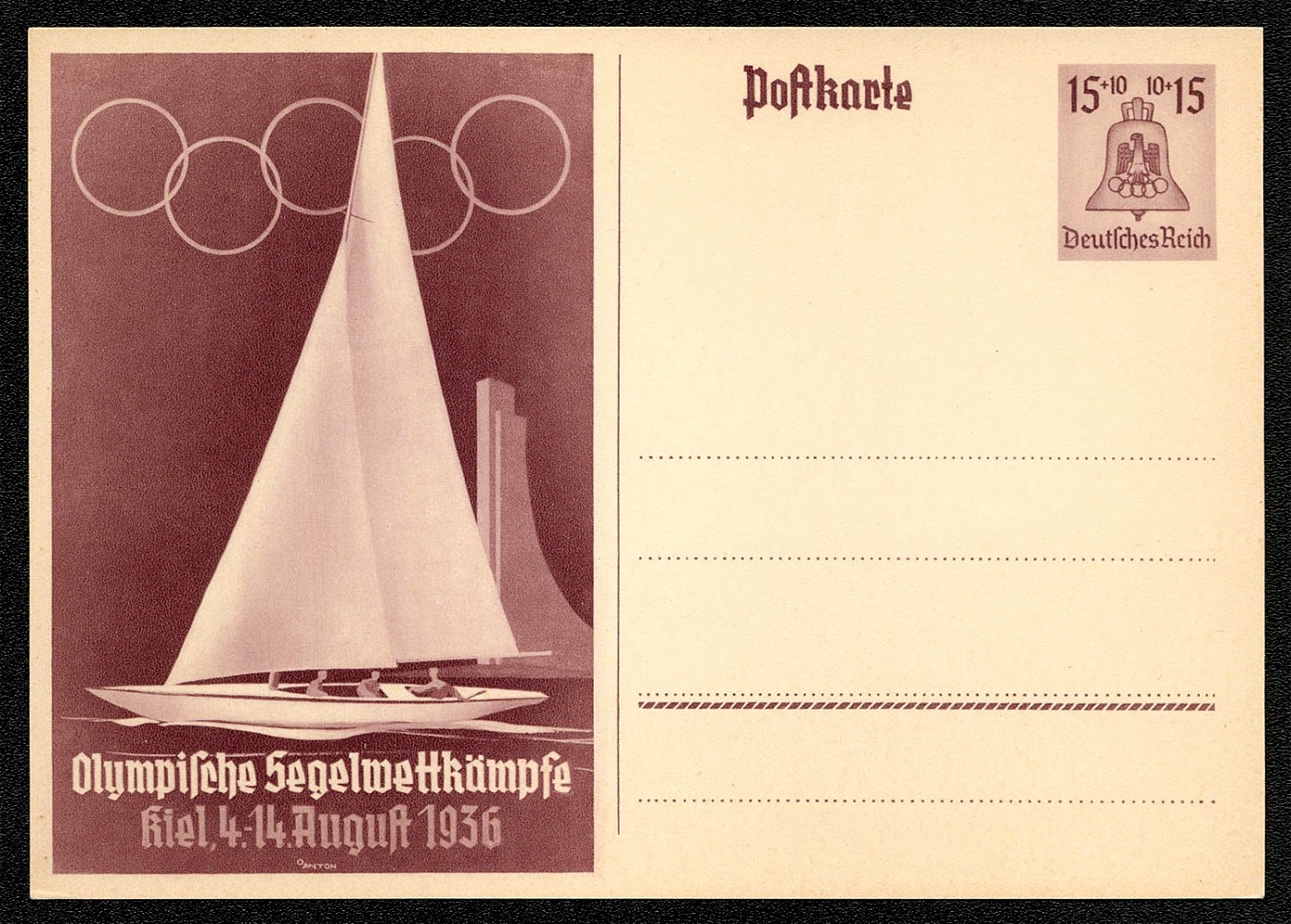
500
$5
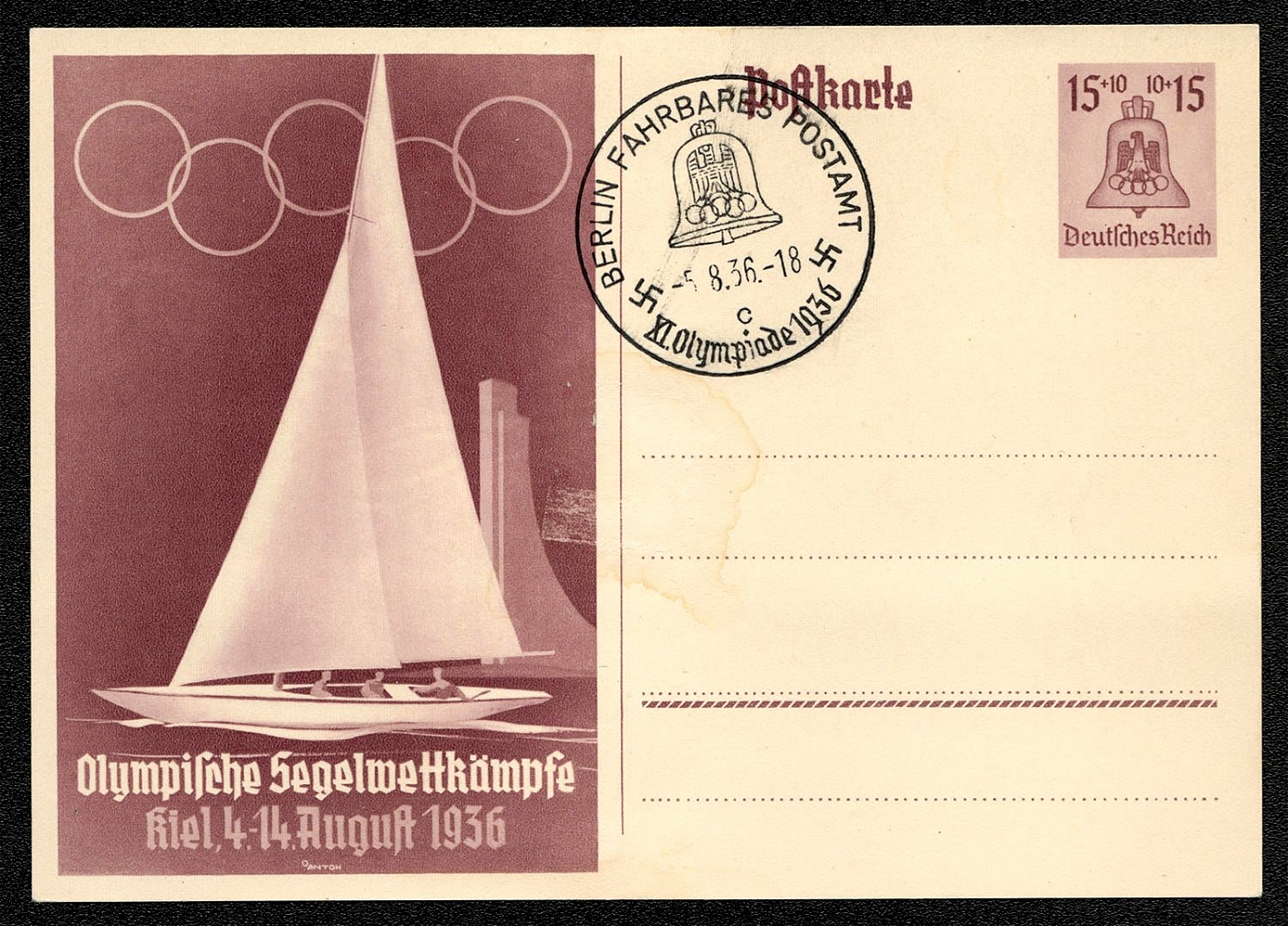
1936 Olympic sailing competitions. Special postmark Berlin
1936 Olympic sailing competitions. Special postmark Berlin
Sold for:
$5
501
-
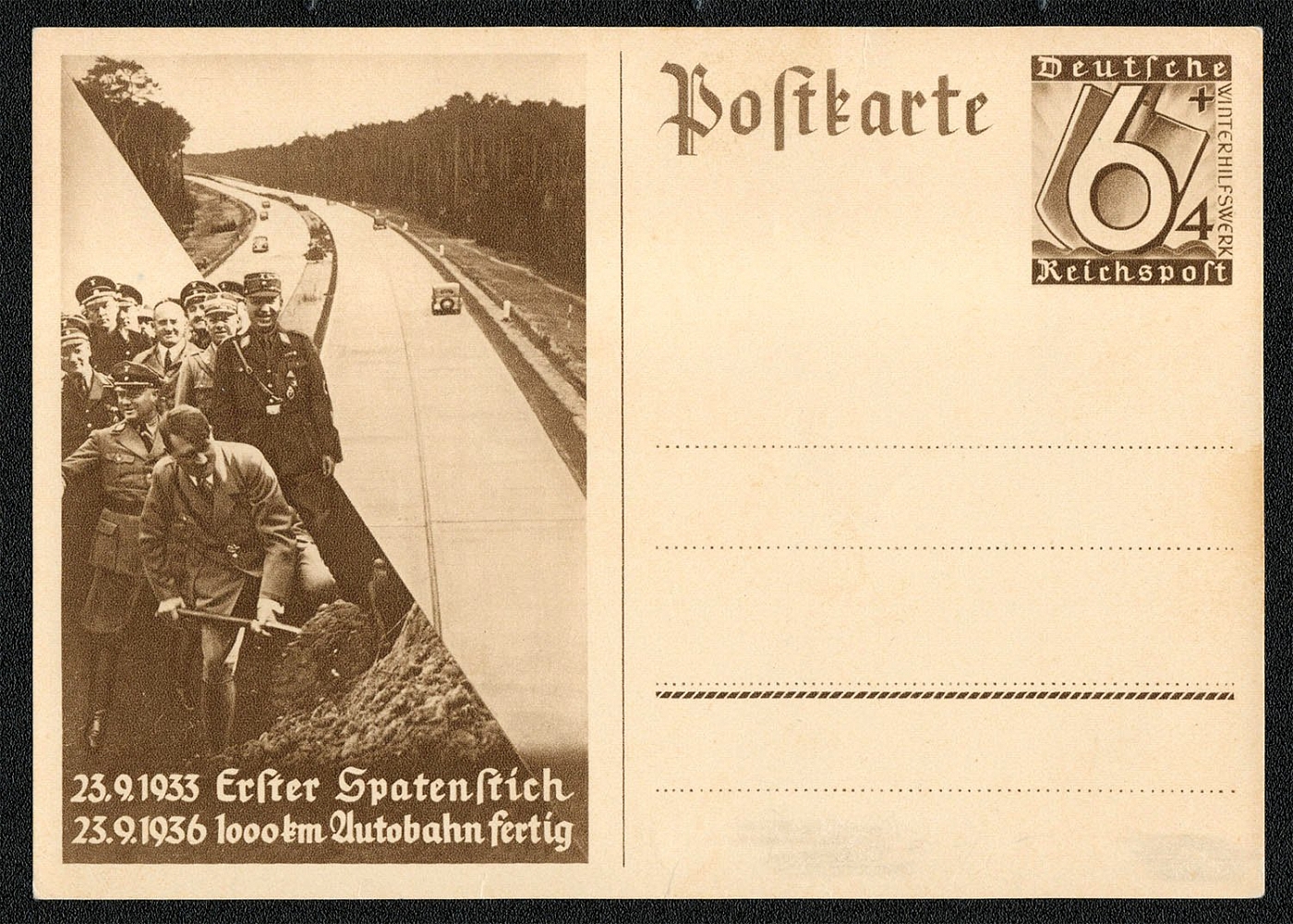
1936 The official post card commemorating both the Winter Aid fund and the completion of one thousand kilometers of autobahn
The official post card commemorating both the Winter Aid fund and the completion of one thousand kilometers of autobahn. The card depicts Hitler lifting the first spade beginning work on the autobahn on 23 September 1933. The scene was taken from a photo by Heinrich Hoffman. Dr. Ley, Minister of Labor, can be seen directly behind Hitler. The imprinted stamp was designed by Erich Stahl. The card was issued on 21 September 1936 and remained valid until 30 June 1937.
Unsold
Lot Number
Price
502
$5
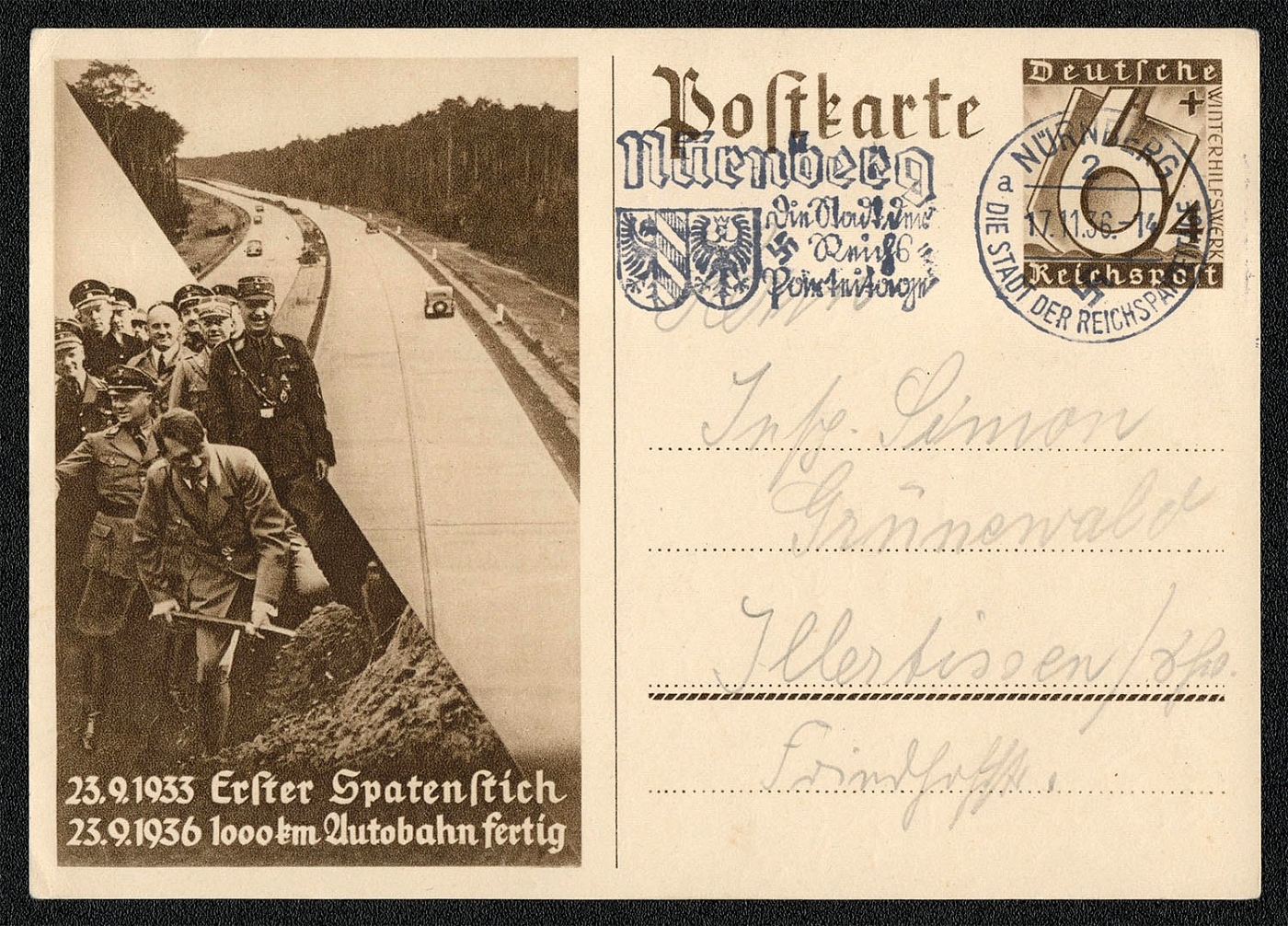
1936 Michel P 263 postally used in Nuremberg 17 November
Michel P 263 postally used in Nurnberg 17 November 1936 This is the official post card commemorating both the Winterhilfswerk and the completion of one thousand kilometers of autobahn. Depicted is Hitler breaking ground on 23 September 1933. The card was issued on 21 September 1936 and remained valid until 30 June 1937.
Sold for:
$5
503
$5
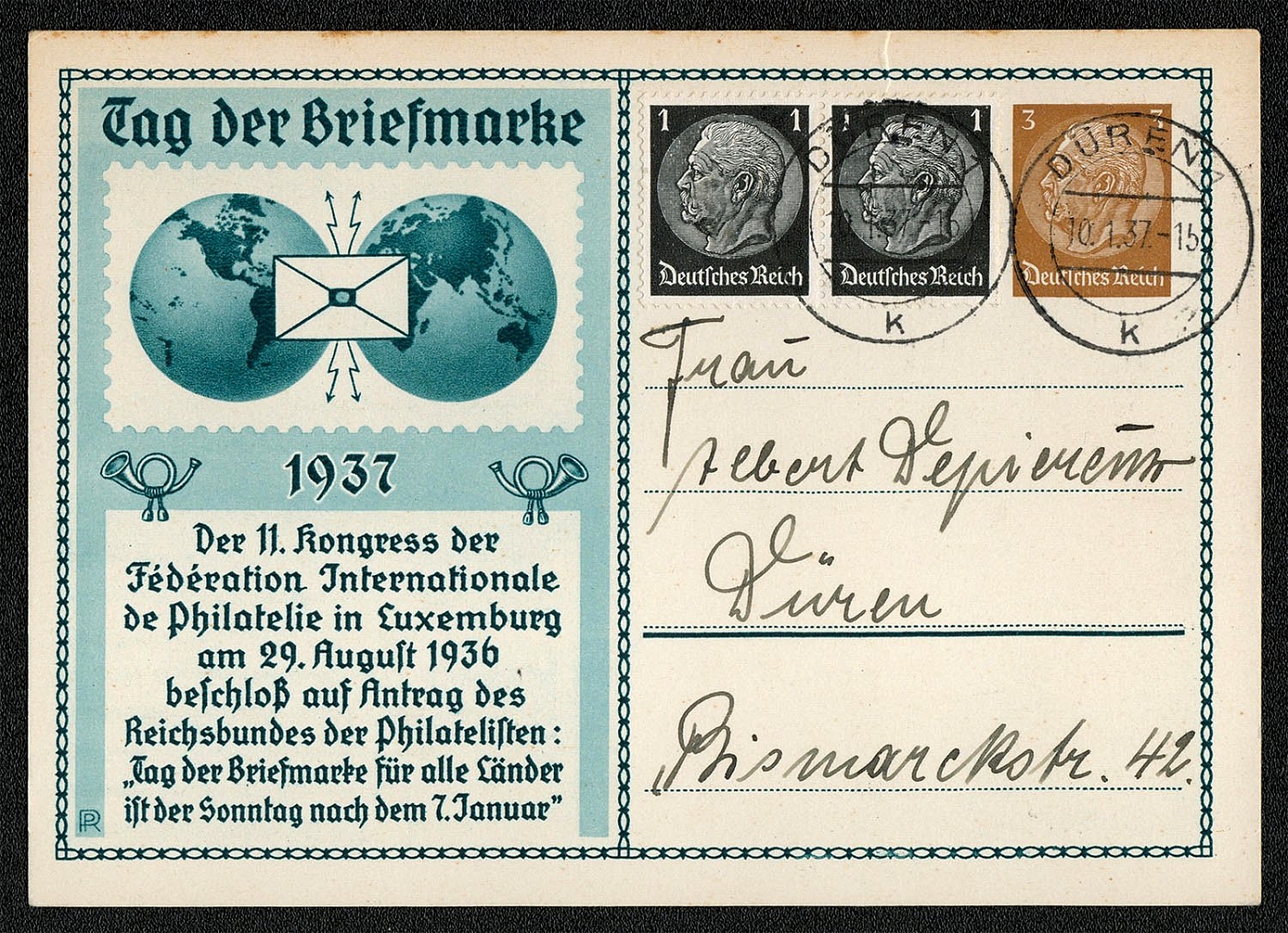
1937 The International Federation of Philately in Luxembourg (FIP) sent to Duren
On 29 August 1936, the International Federation of Philately in Luxemburg (FIP) proposed a Day of the Stamp for all countries in the federation to be held on 7 January of each year. It was changed to 10 January in 1937. There were several postal stationeries printed, but the above card with an imprinted 3 Rpf Hindenburg head stamp was the standard version used throughout Germany. It was additionally franked with a pair of Sc 415 and posted in Diiren on the Day of the Stamp. A husband apparently sent the card to his wife. § Diiren is in northern Germany approximately 20 miles west of Koln. It is situated on the Roer River in a fertile plain. In 1937 it was a busy town of over 40,000 with manufactories of cloth, paper, iron etc. The most conspicuous object in the skyline at that time was the Gothic tower of the Church of St. Anna.
Sold for:
$5
504
$5
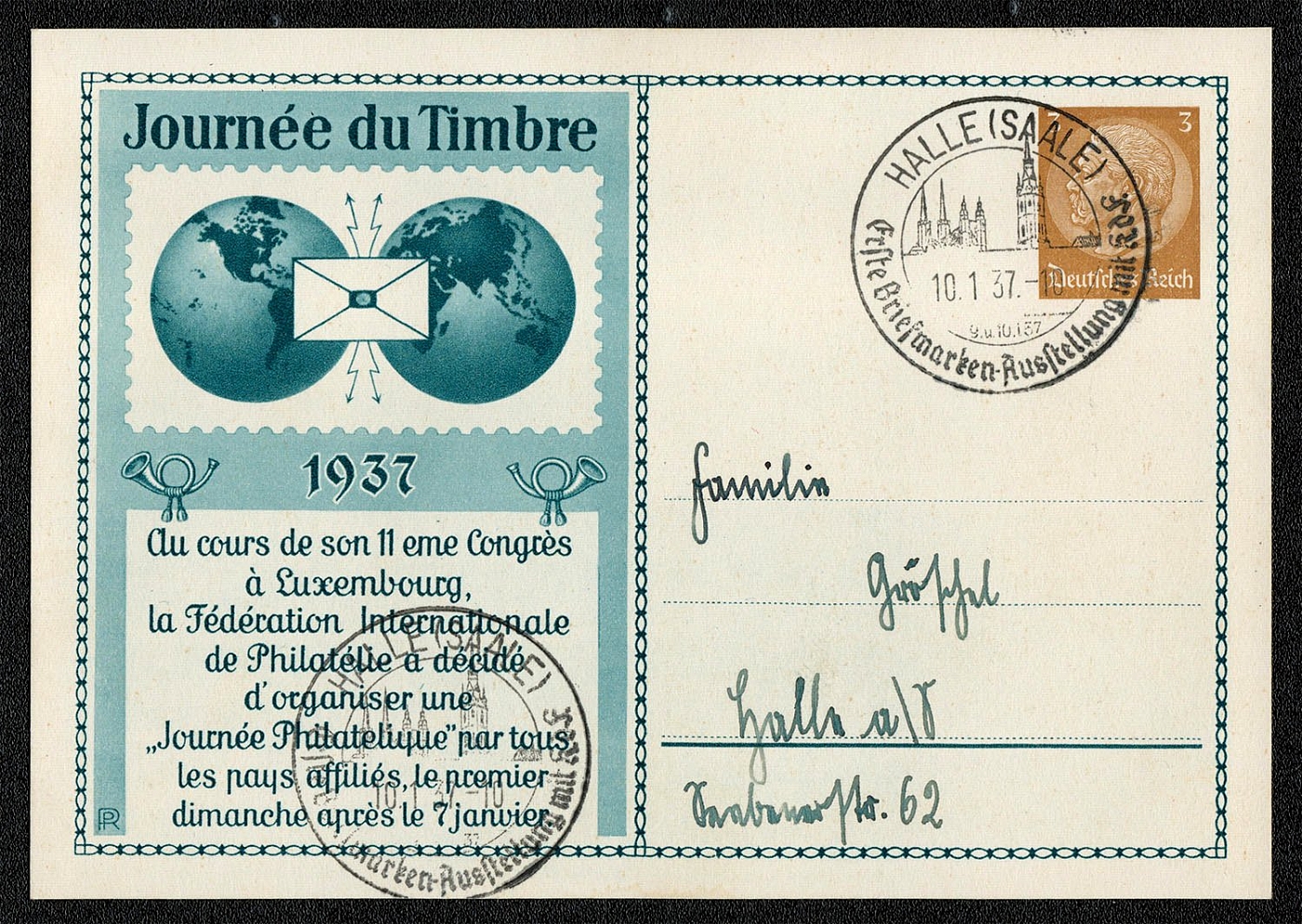
1937 The International Federation of Philately in Luxembourg (FIP) sent to Halle
On 29 August 1936, the International Federation of Philately in Luxemburg (FIP) proposed a Day of the Stamp for all countries in the federation to be held on 7 January of each year. It was changed to 10 January in 1937. There were several postal stationeries printed, but the above card with an imprinted 3 Rpf Hindenburg head stamp was the standard version used throughout Germany. It was additionally franked with a pair of Sc 415 and posted in Diiren on the Day of the Stamp. A husband apparently sent the card to his wife. § Diiren is in northern Germany approximately 20 miles west of Koln. It is situated on the Roer River in a fertile plain. In 1937 it was a busy town of over 40,000 with manufactories of cloth, paper, iron etc. The most conspicuous object in the skyline at that time was the Gothic tower of the Church of St. Anna.
Sold for:
$5
505
$5
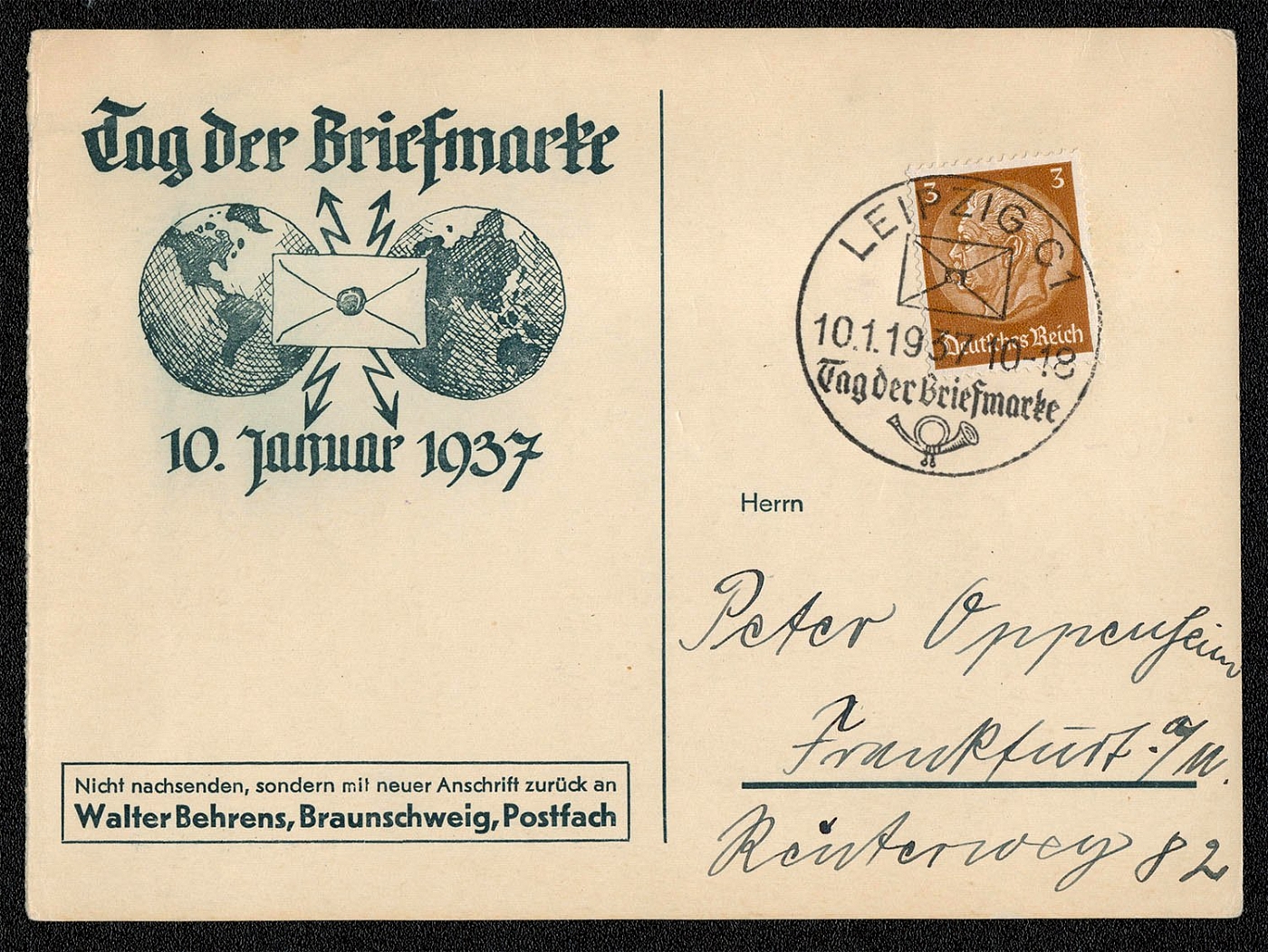
1937 Day of the Stamp posted in Leipzig
Privately printed card franked with Scott 416 and posted in Leipzig on the Day of the Stamp, 10 January 1937. The card’s caption advises that it should not be forwarded unless a new address is on file.
Sold for:
$5
506
-
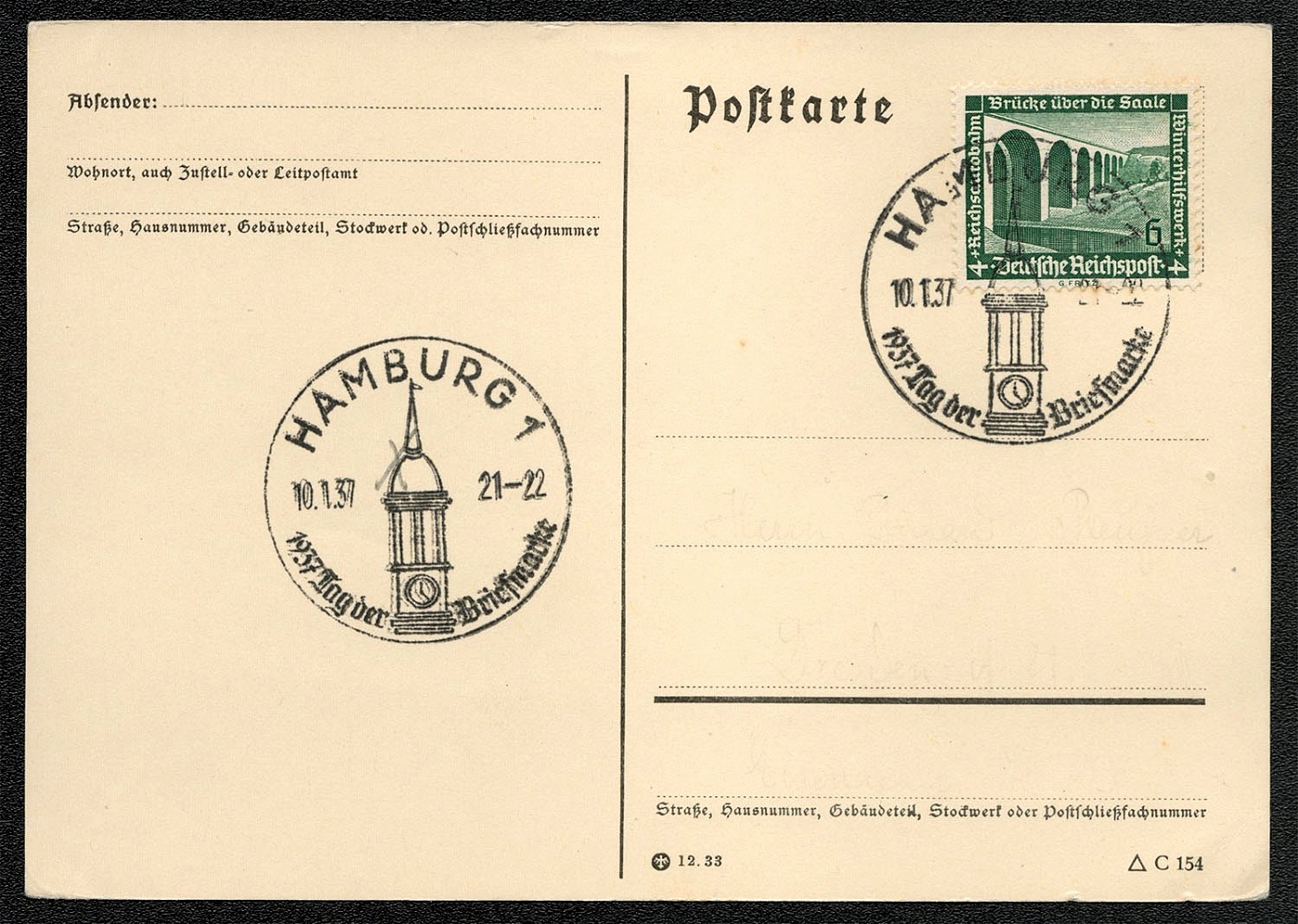
1937 Scott B96 with a Hamburg Day of the Stamp favor cancellation
1937 Scott B96 with a Hamburg Day of the Stamp favor cancellation
Unsold
507
$8
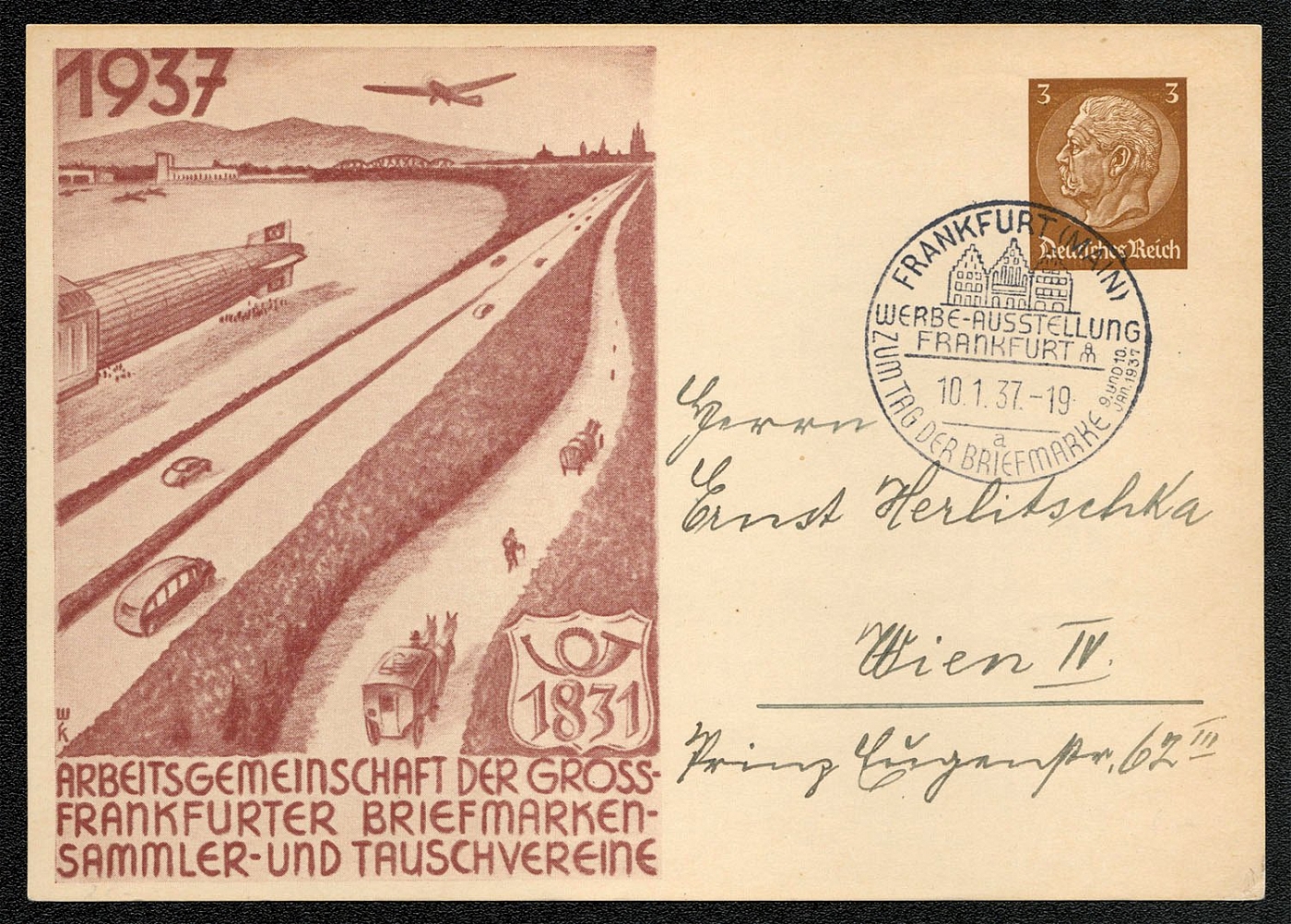
1937 Frankfurt (Main) Privately printed card with Special postmark Frankfurt Publicity Exhibit for the Day of the Postage Stamp
Privately printed card with Sonderstempel (special cancellation) postmarked: Frankfurt (Main) 10 January 1937. The cancellation reads: Frankfurt Publicity Exhibit for the Day of the Postage Stamp
Sold for:
$8
508
-
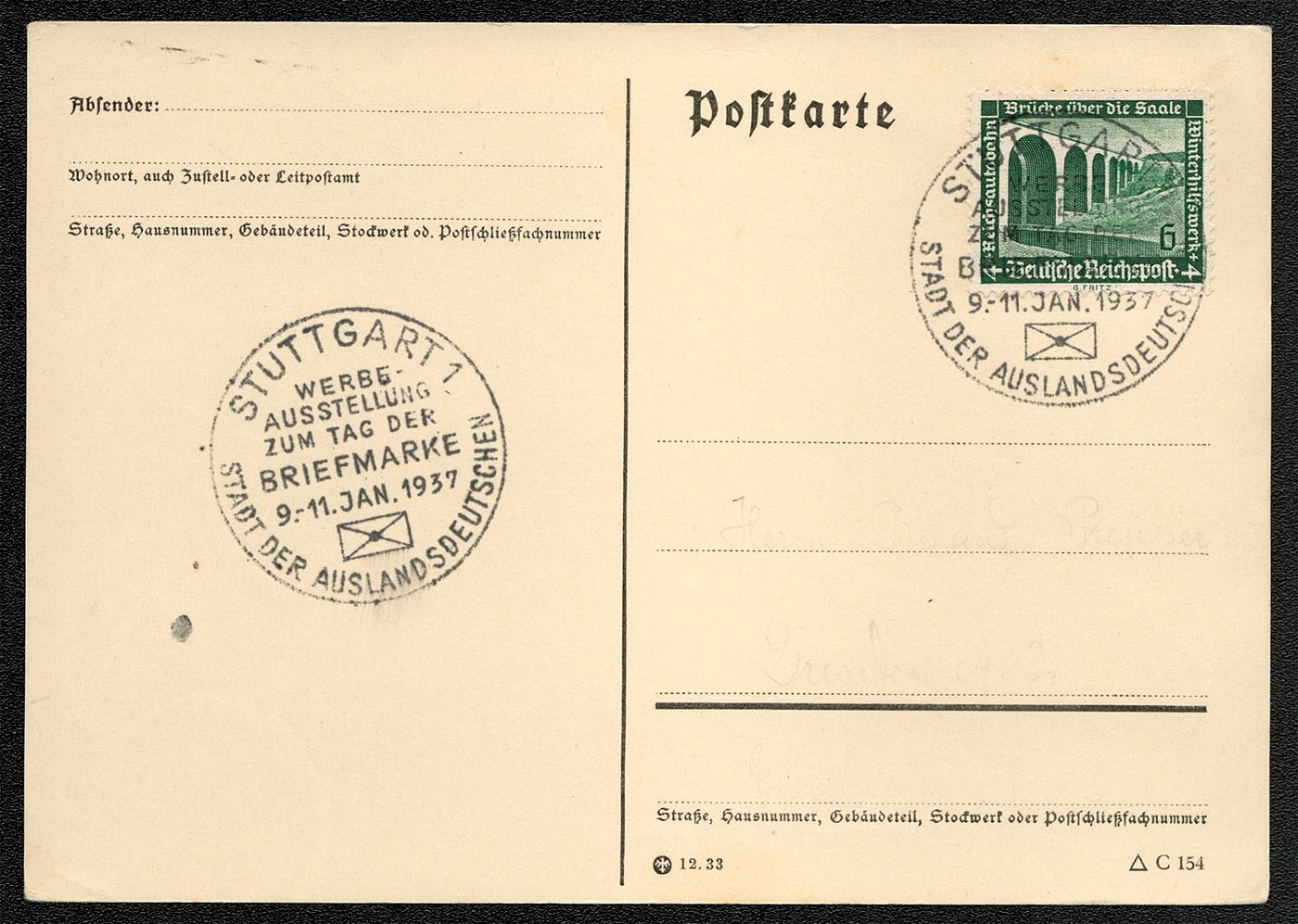
1937 Post card franked with Scott B96 Specil postmark Day of the Stamp Exhibition
Post card franked with Scott B96. The Stuttgart 1 favor cancellation publicizes the Day of the Stamp Exhibition held 9-11 January 1937 and promotes Stuttgart as the City of German nationals living abroad.
Unsold
509
-
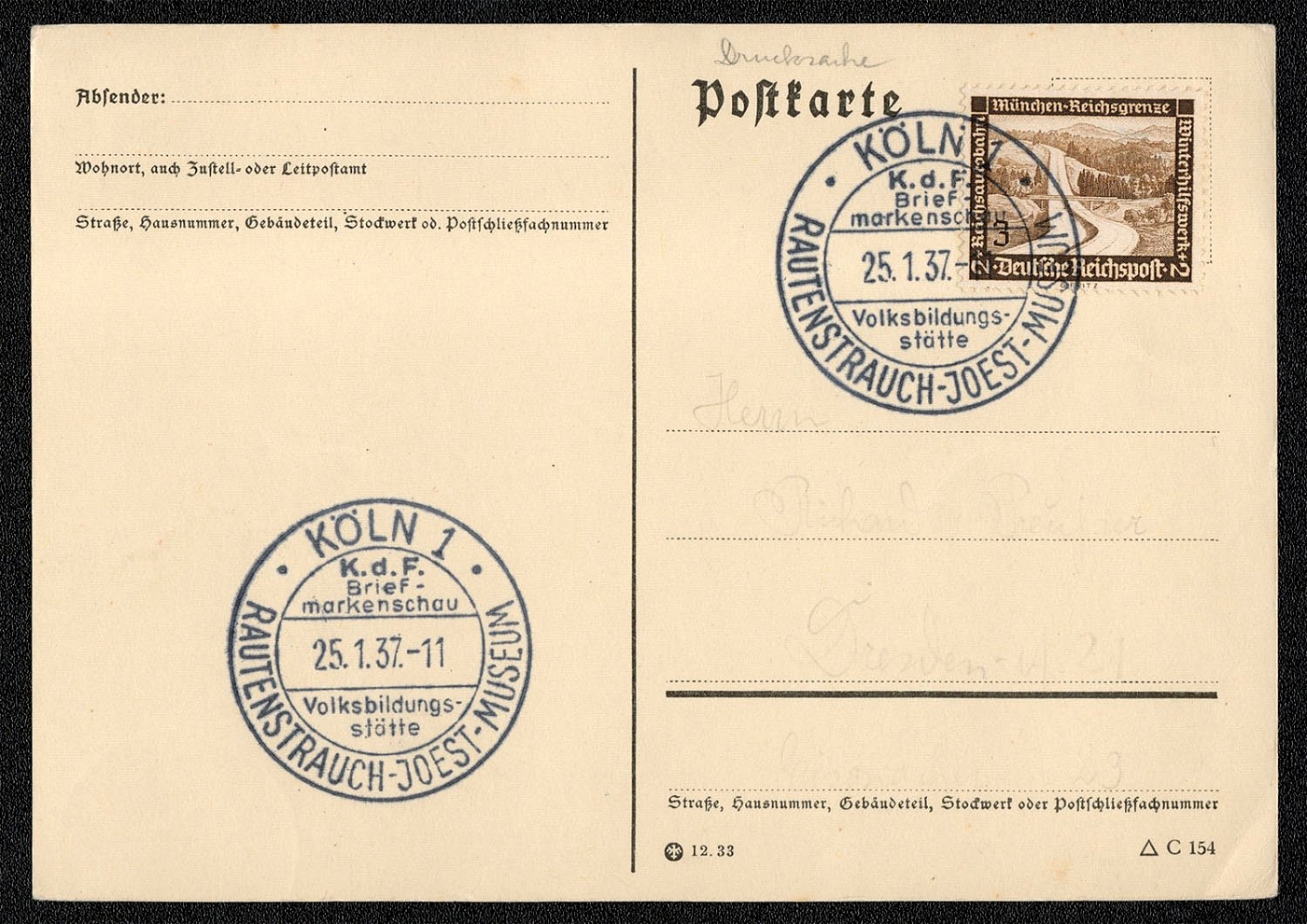
1937 Postcard franked with Scott B93 Specil postmark Koln as the City of Adult Education
Post card franked with Scott B93. The Koln 1 (Rautenstrauch-Joest Museum Station) favor cancellation publicizes the K.d.F. Stamp Show, 25 January 1937, and promotes Koln as the City of Adult Education.
Unsold
510
$5
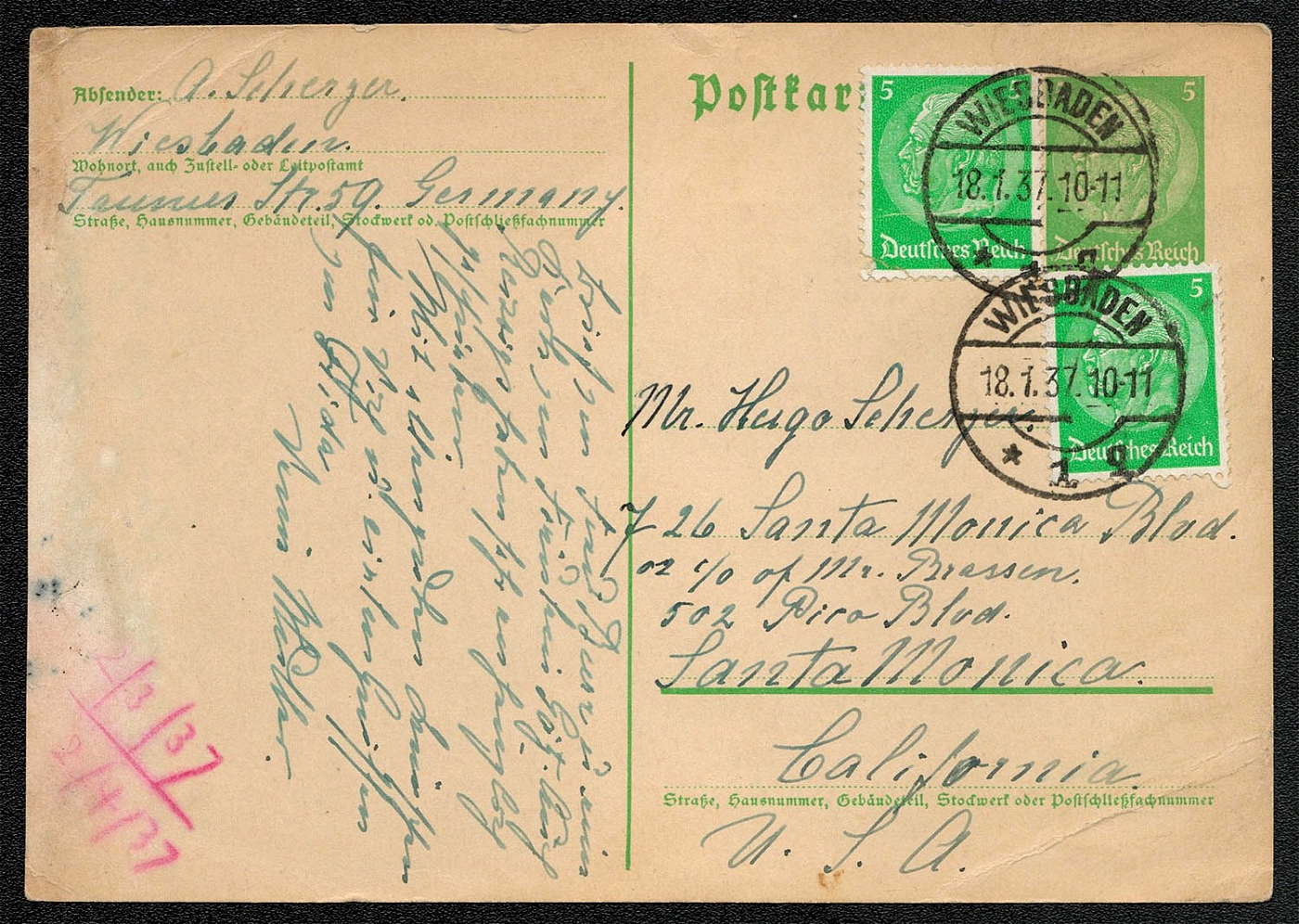
1937 Postcard P 225 additionally franked with two copies of Scott 416 Sent to the Santa Monica, California
Postally used P 225 additionally franked with two copies of Scott 416 paying the international rate to the Santa Monica, California. Posted in Wiesbaden, 18 January 1937.
Sold for:
$5
511
$5
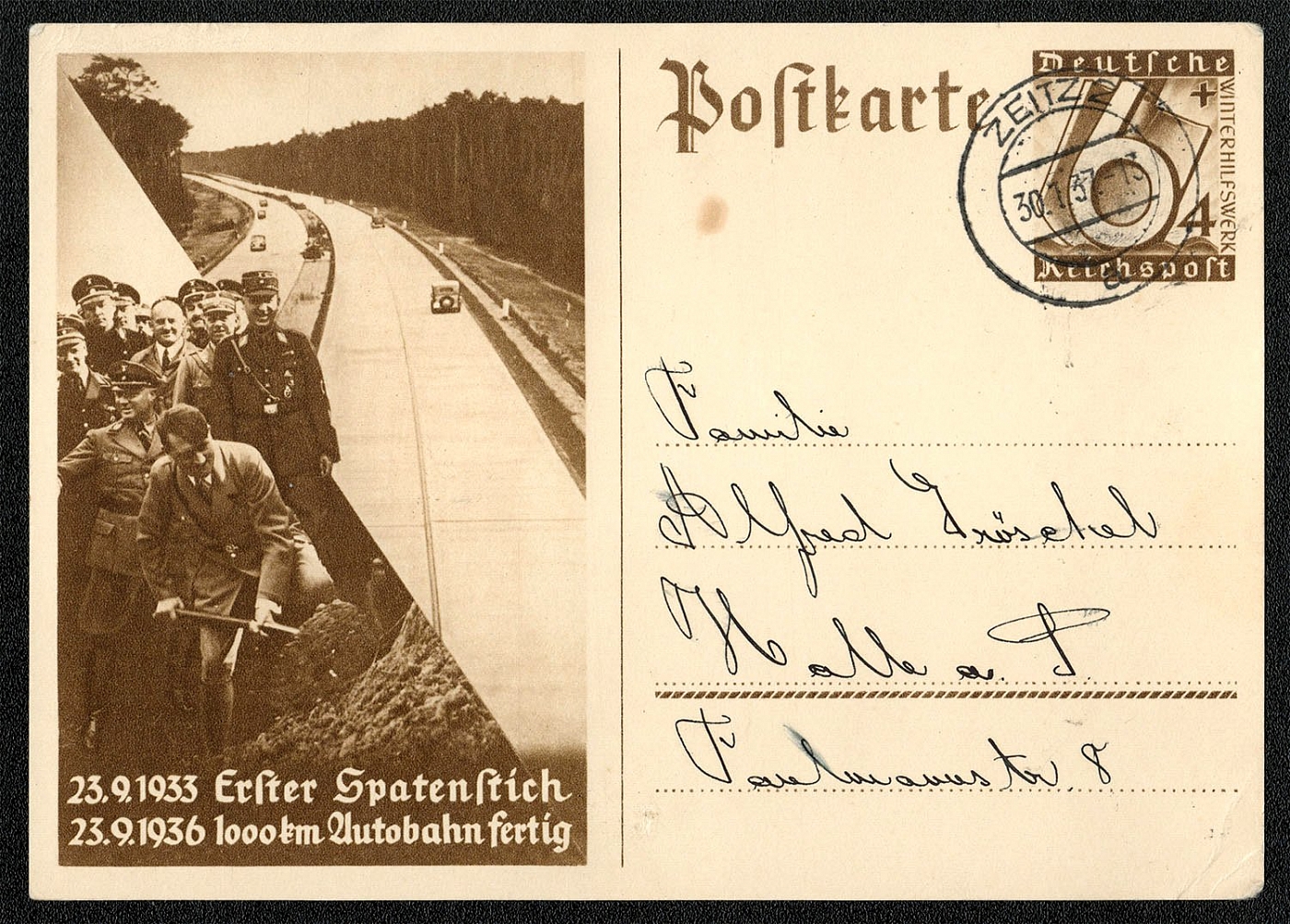
1937 Postcard Р 263 postally used in Zeitz 30 January 1937 Depicted is Hitler breaking ground
Michel Р 263 postally used in Zeitz 30 January 1937 This is the official post card commemorating both the 1936-37 Winterhilfswerk and the completion of one thousand kilometers of autobahn. Depicted is Hitler breaking ground on 23 September 1933. The card was issued on 21 September 1936 and remained valid until 30 June 1937.
Sold for:
$5
512
$5
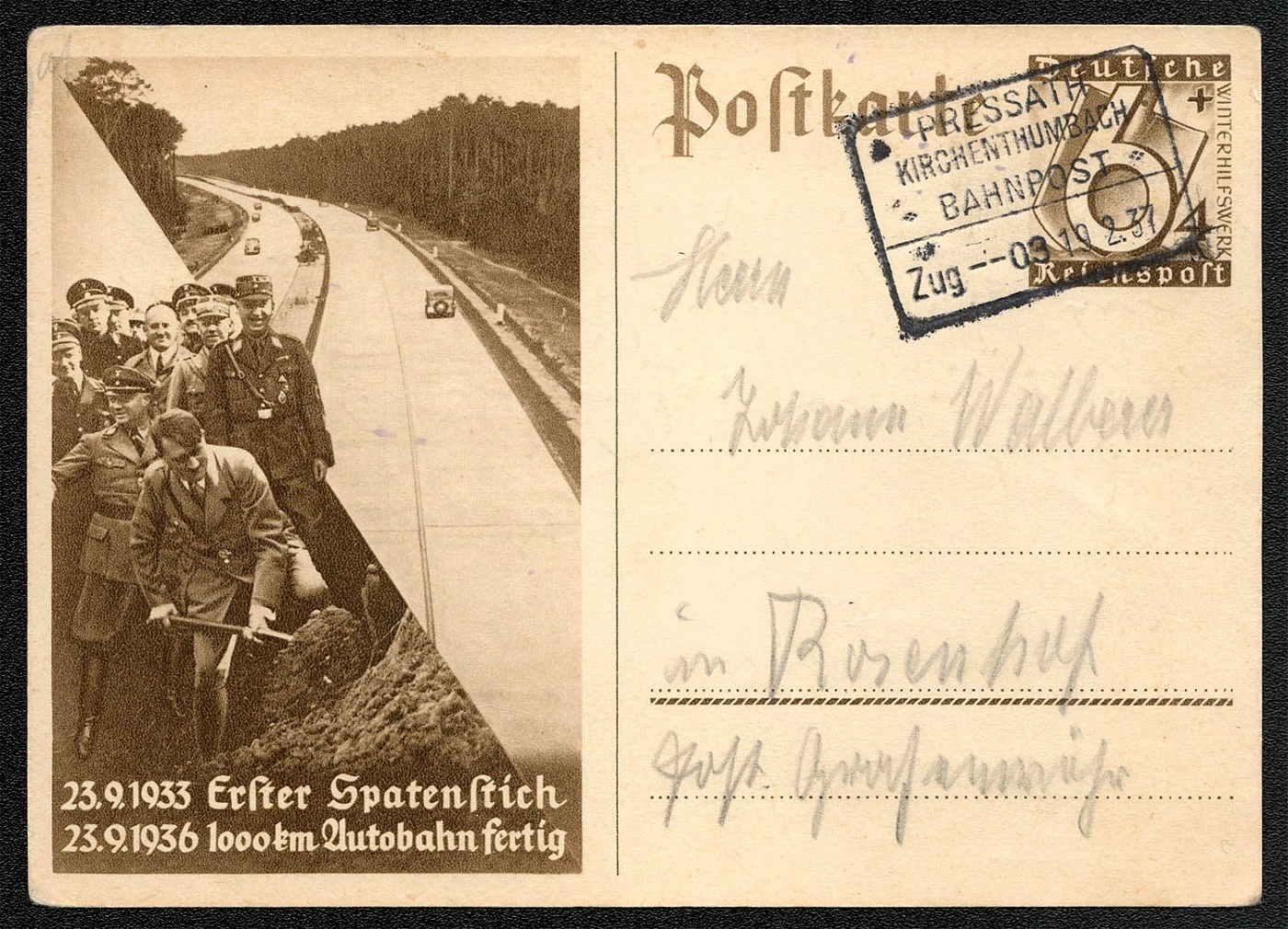
1937 Postcard P 263 with Bahnpost (Railway) cancel Depicted is Hitler breaking ground
Michel P 263 with Bahnpost (Railway) cancel posted 19 February 1937 onboard Zug—3 (Train 3) on the Pressath and Kirchenthumbach Route. (Pressath and Kirchenthumbach are villages southeast of Bayreuth in Bavaria.)
Sold for:
$5
513
-
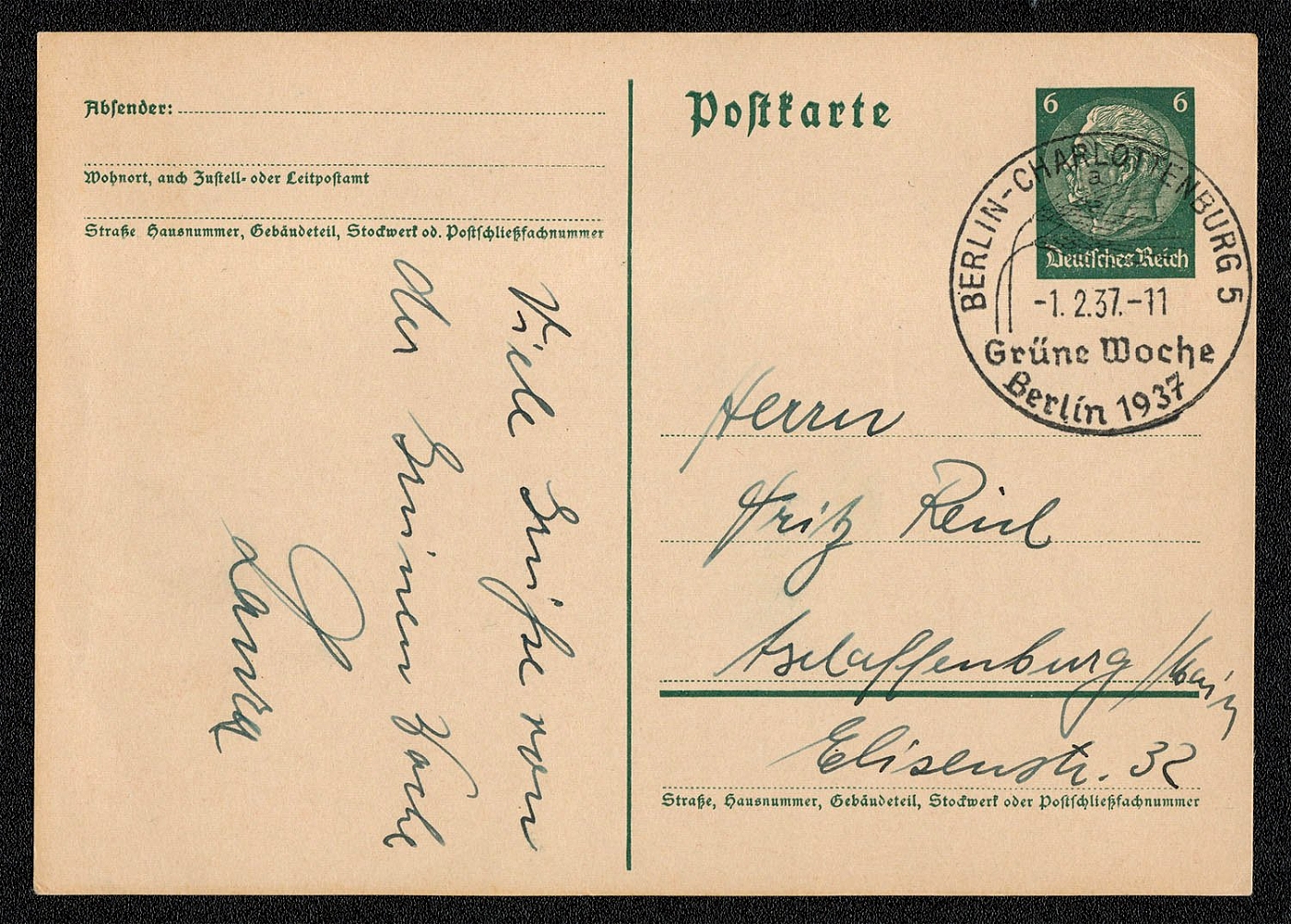
1937 Postcard P 226 postally used with Special postmark Berlin-Charlottenburg Green Week
Michel P 226 postally used with Gefalligkeitsstempel (favor cancellation). Berlin-Charlottenburg 5 Postal Station “a” 1 February 1937. The cancellation reads: Green Week. It is believed that “Green Week” was a Berlin horticultural celebration.
Unsold
514
-
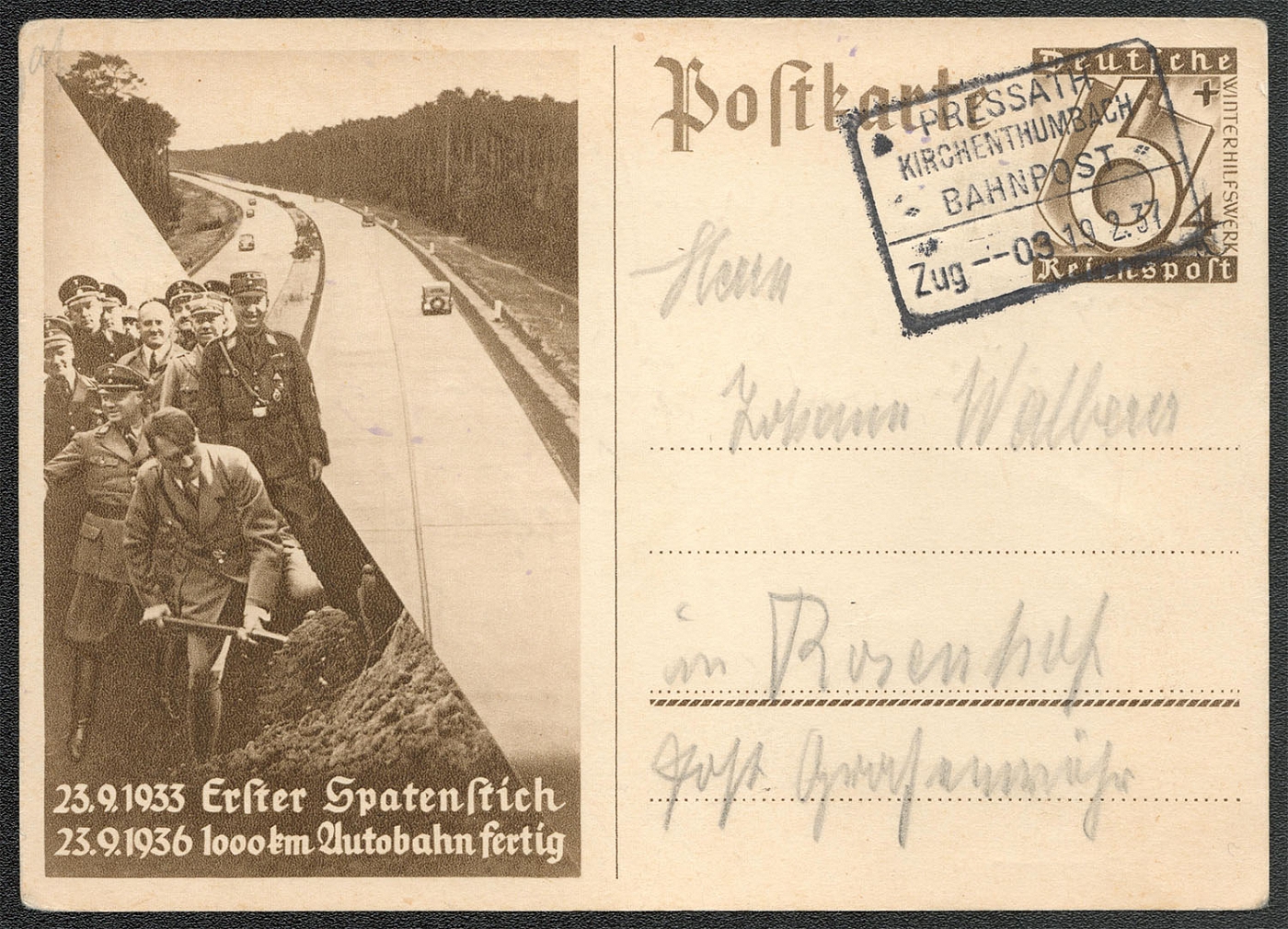
1937 Postcard P 263 with Bahnpost (Railway) cancel
Michel P 263 with Bahnpost (Railway) cancel posted 19 February 1937 onboard Zug—3 (Train 3) on the Pressath and Kirchenthumbach Route. (Pressath and Kirchenthumbach are villages southeast of Bayreuth in Bavaria.)
Unsold
515
$5
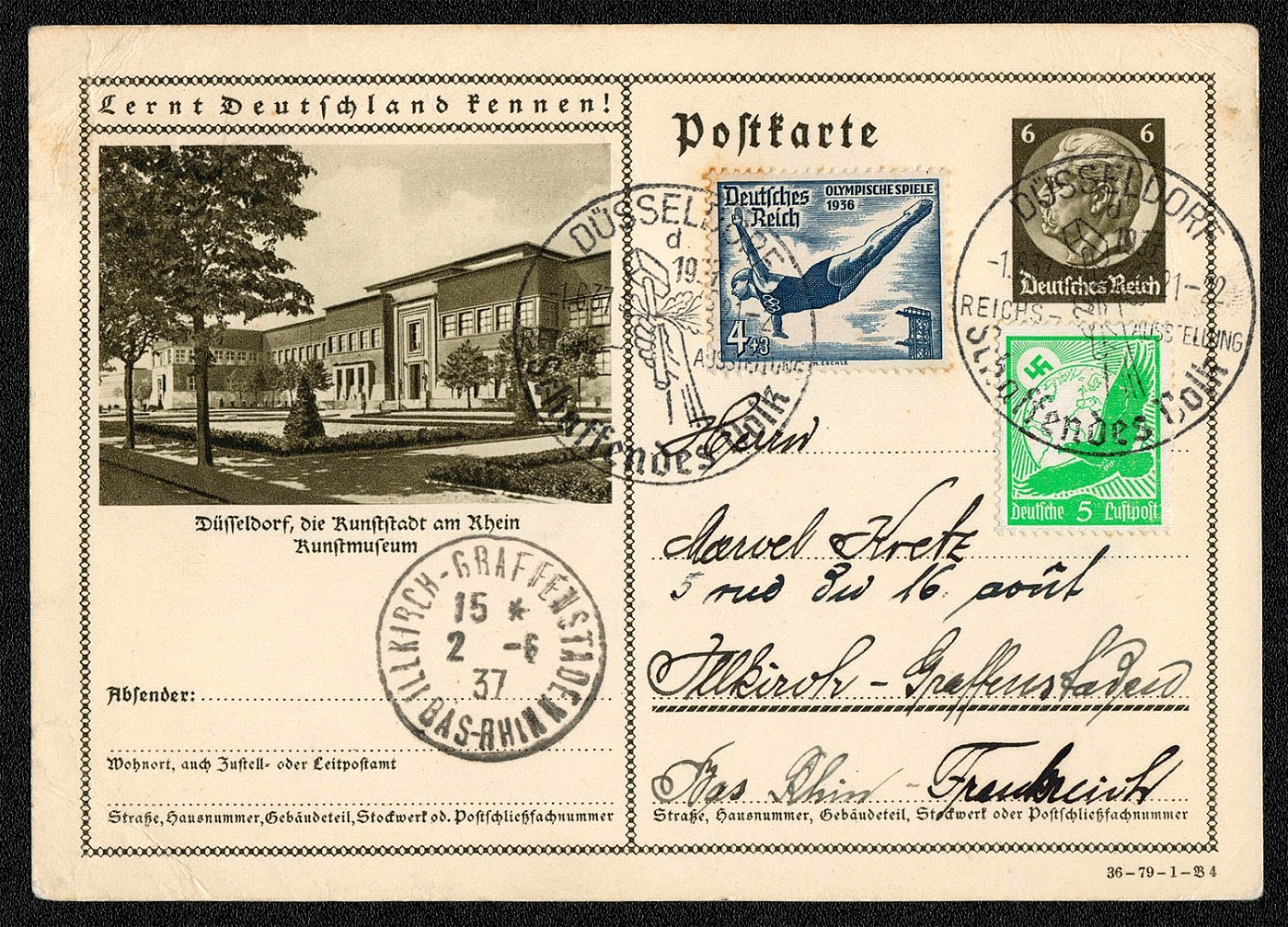
1937 Get to Know Germany! series depicts The Art Museum of Dusseldorf
This busy postal card of the 1936 Get to Know Germany! series depicts the Art Museum of Dusseldorf, The City of Art on the Rhein. The card is additionally franked with Sc B83 and C46. The special cancellation commemorates the REICHS AUSSTELLUNG National Exhibition Creative People Mailed from Diisseldorf on 1 June 1937 to Illkirch-Graffenstaden, a suburb of Strasbourg in (then and now) northeast France.
Sold for:
$5
516
-
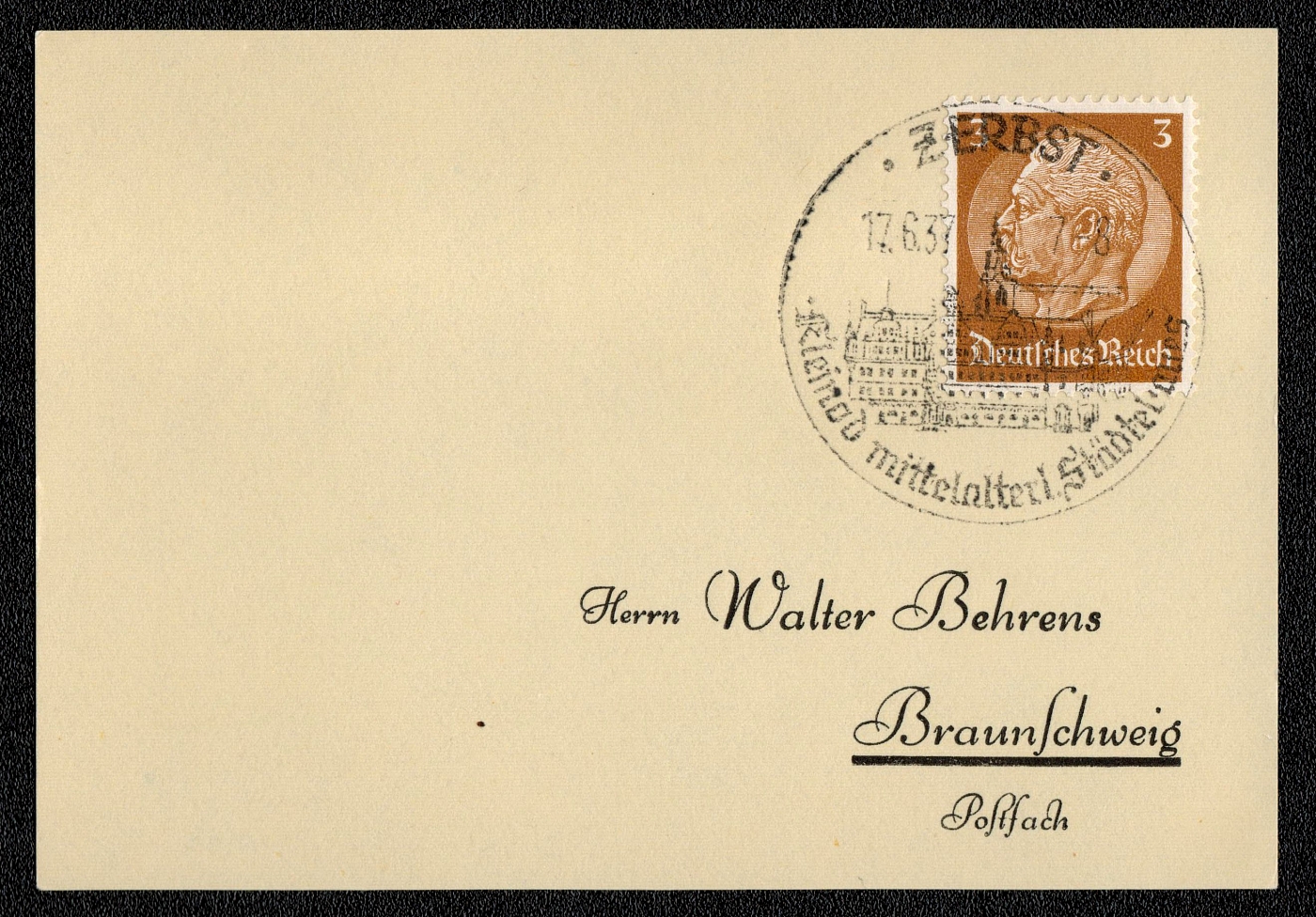
1937 Scott 416 with cancellation publicizes the town as the Jewel of the Middle Ages
"Scott 416 with Sonderstempel (special cancellation) postmarked: Zerbst 17 June 1937. The cancellation publicizes the town as the Jewel of the Middle Ages. Zerbst is an old town in Northern Germany with two 15""' century gates. In 1937 the population numbered approximately 20,000. The Schloss, built in 1681-1750, contains the Schloss Museum, with rich prehistoric, local history, natural history, and other collections. In the Markt-Platz, with its old gabled houses, stands a Roland figure from 1446 and a female figure on a slender column, called the Butter-Jungfer, the significance of which is unclear. The Rathaus, with two handsome 15lh century gables, was rebuilt in 1610 and 1895. The Nikolai Kirche, also built in the 15,h century, contains richly ornamented choir stalls. The gymnasium is established in a Franciscan monastery and was founded in 1250."
Unsold
517
-
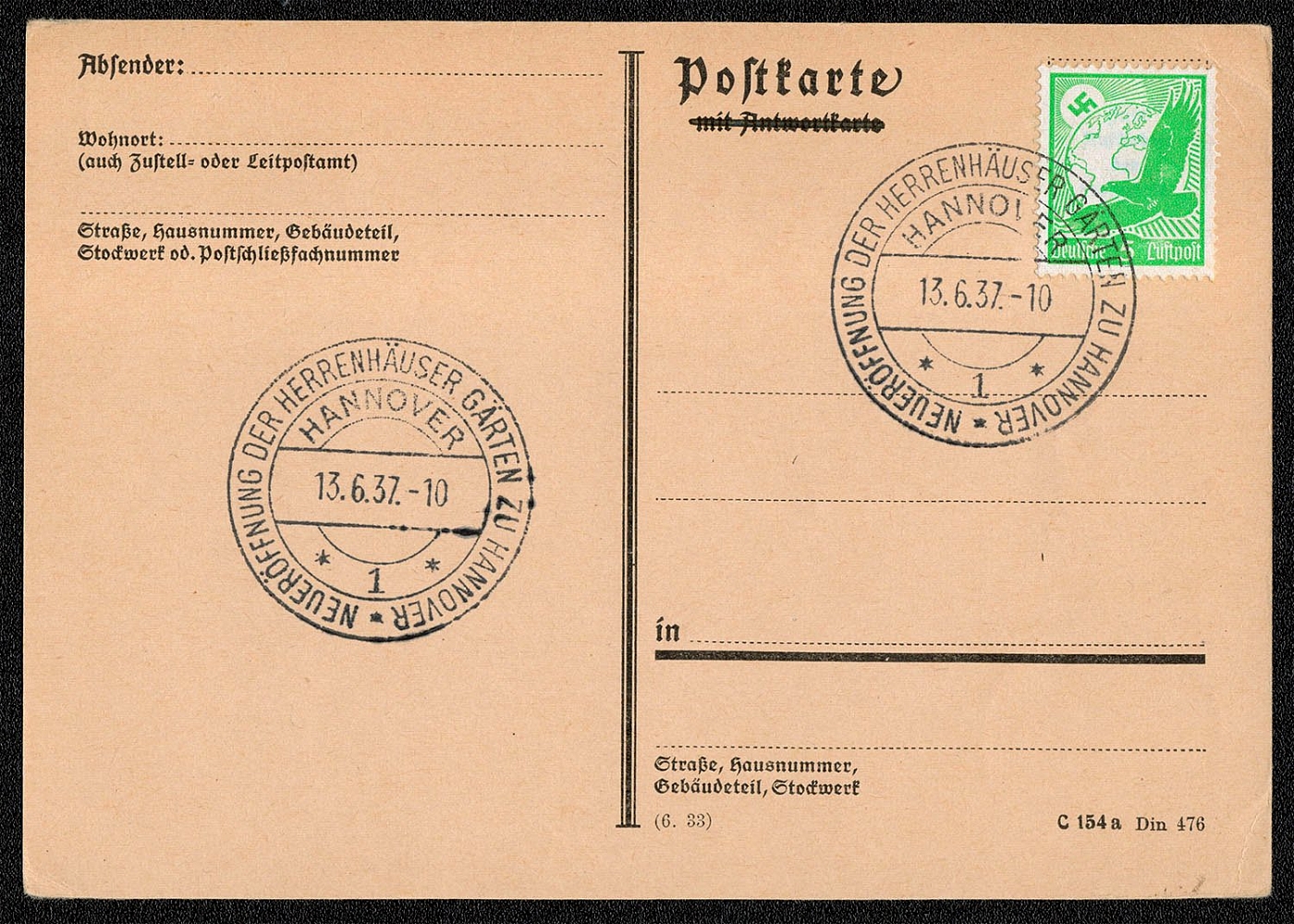
1937 Scott No. C46 with cancellation commemorating reopening of the Hannover Mansion Gardens
Scott No. C46 with cancellation commemorating reopening of the Hannover Mansion Gardens, postmarked 13 June 1937.
Unsold
518
-
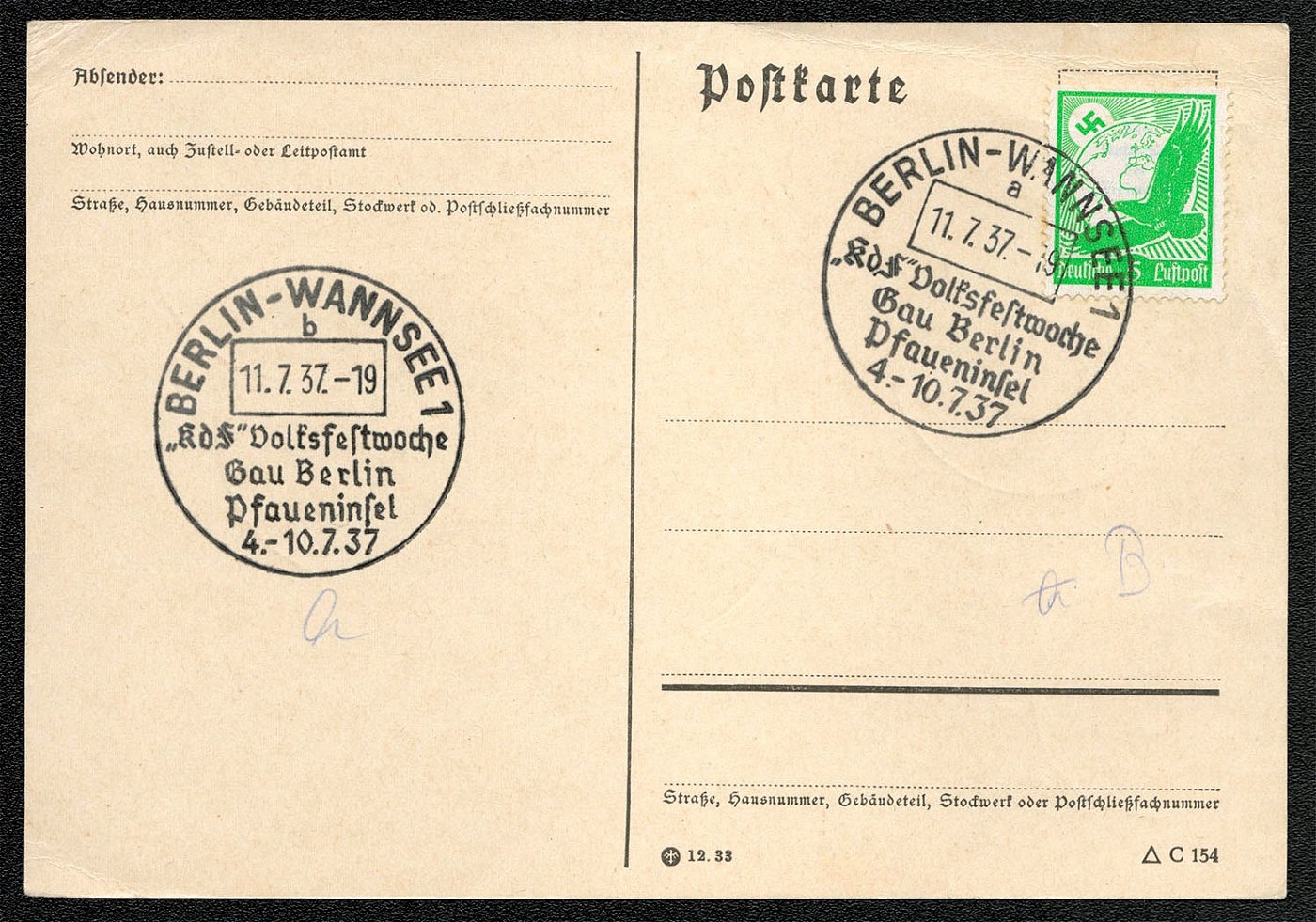
1937 Scott No. C46 with cancellation commemorating the “KdF” Folks Festival in the Nazi Administrative District of Berlin
Scott No. C46 with cancellation commemorating the “KdF” Folks Festival in the Nazi Administrative District of Berlin, 4-10.7.37, postmarked 11 July 1937
Unsold
519
-
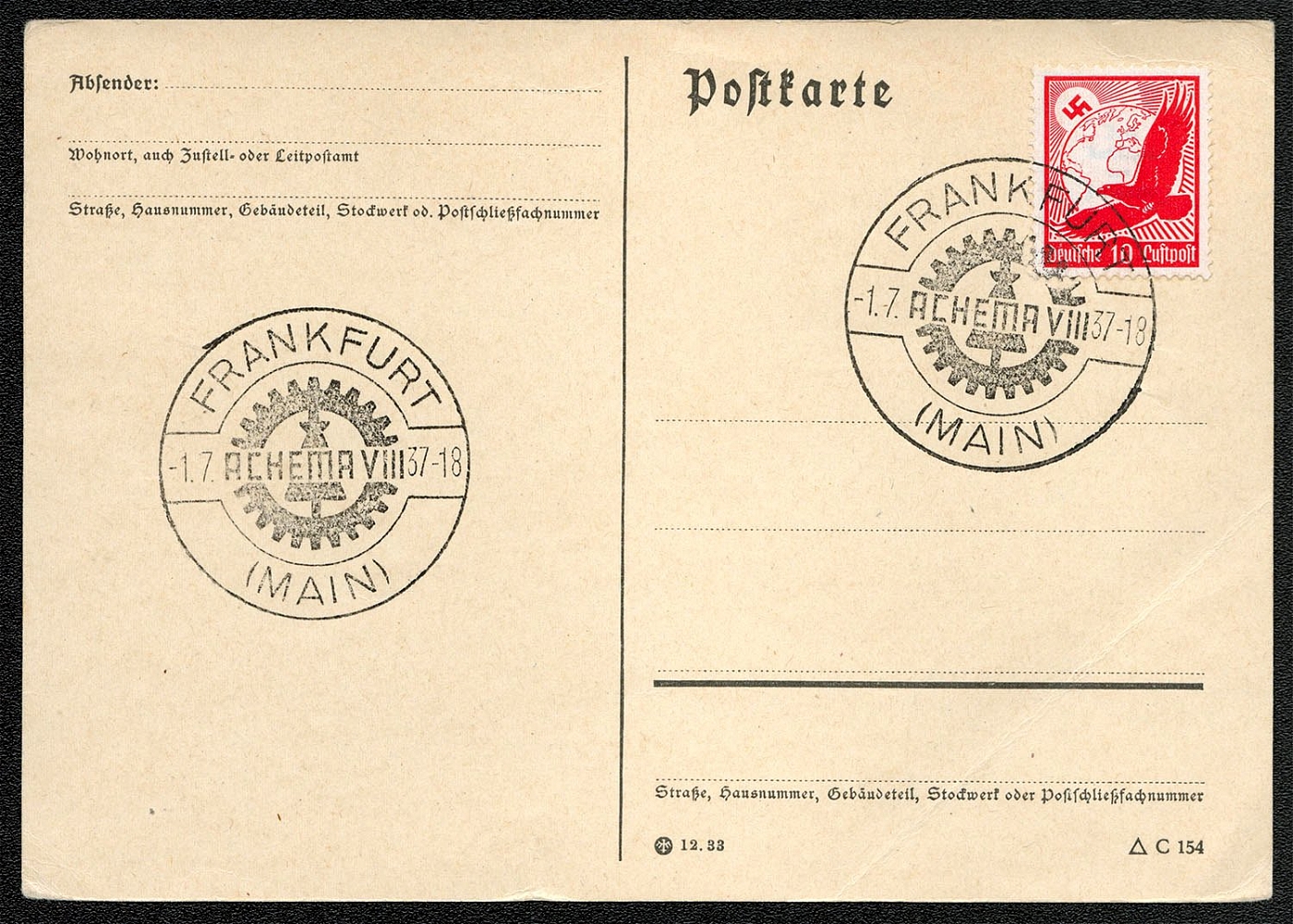
1937 Scott No. C47 with cancellation commemorating “Achema VIII” (Unknown), postmarked 1 July
Scott No. C47 with cancellation commemorating “Achema VIII” (Unknown), postmarked 1 July 1937, Frankfurt (Main).
Unsold
520
-
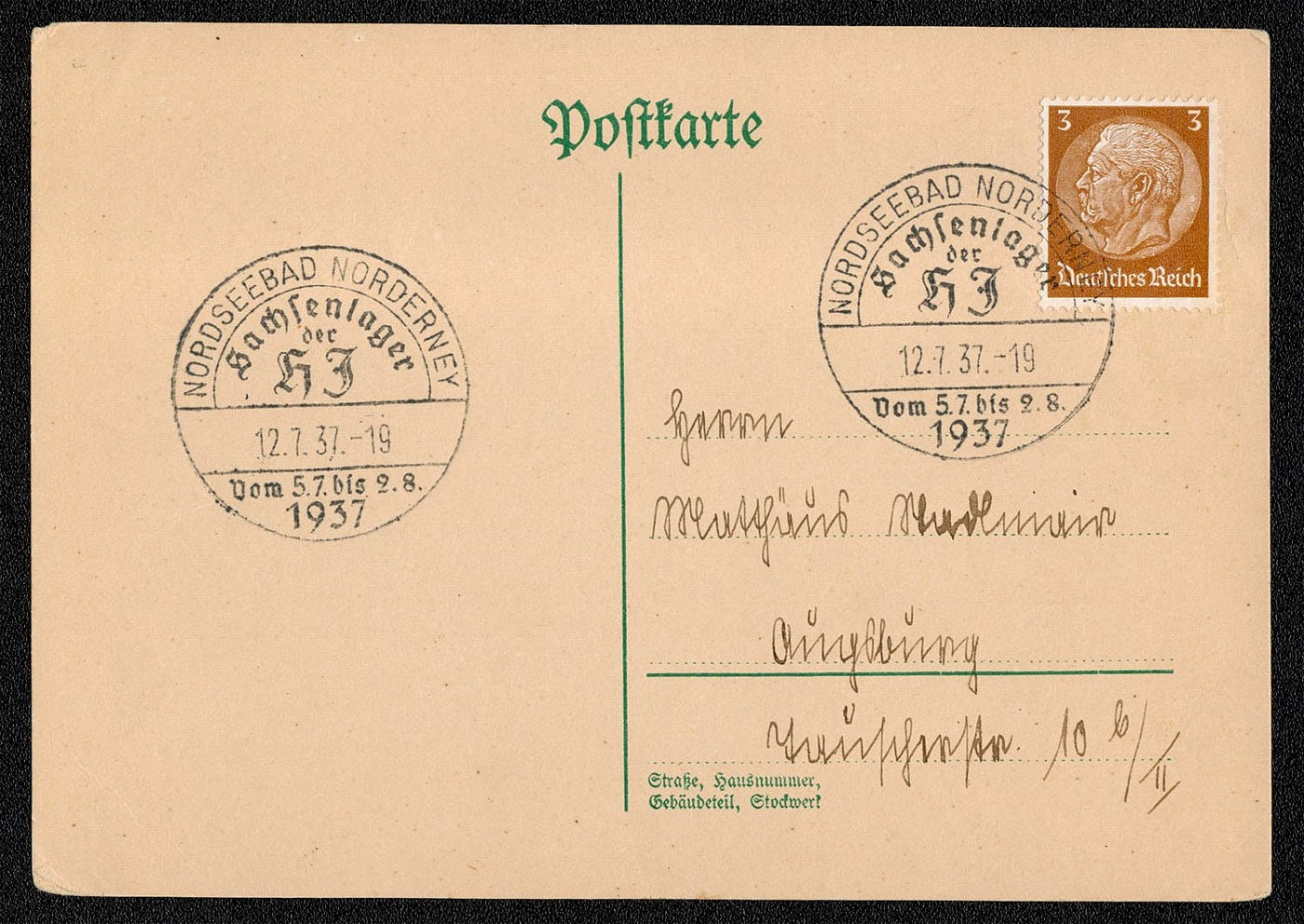
1937Scott 416 with with special cancellation Nordseebad Norderney
Scott 416 with Sonderstempel (special cancellation) postmarked: Nordseebad Norderney 12 July 1937. The cancellation publicizes the encampment of the Sachsen Hitler Youth, from 5 July through 2 August 1937. Norderney, with approximately 5000 inhabitants in 1937, is the second largest of the East Frisian Islands in the North Sea. It is about 8 miles long and l‘/i miles broad. The village, one of the most fashionable German sea bathing places , lies at the southwest angle of the island and owes it reputation to its fine sandy beach, good drinking water, and mild climate. It was also frequented as a winter resort during the Third Reich.
Unsold
521
$10
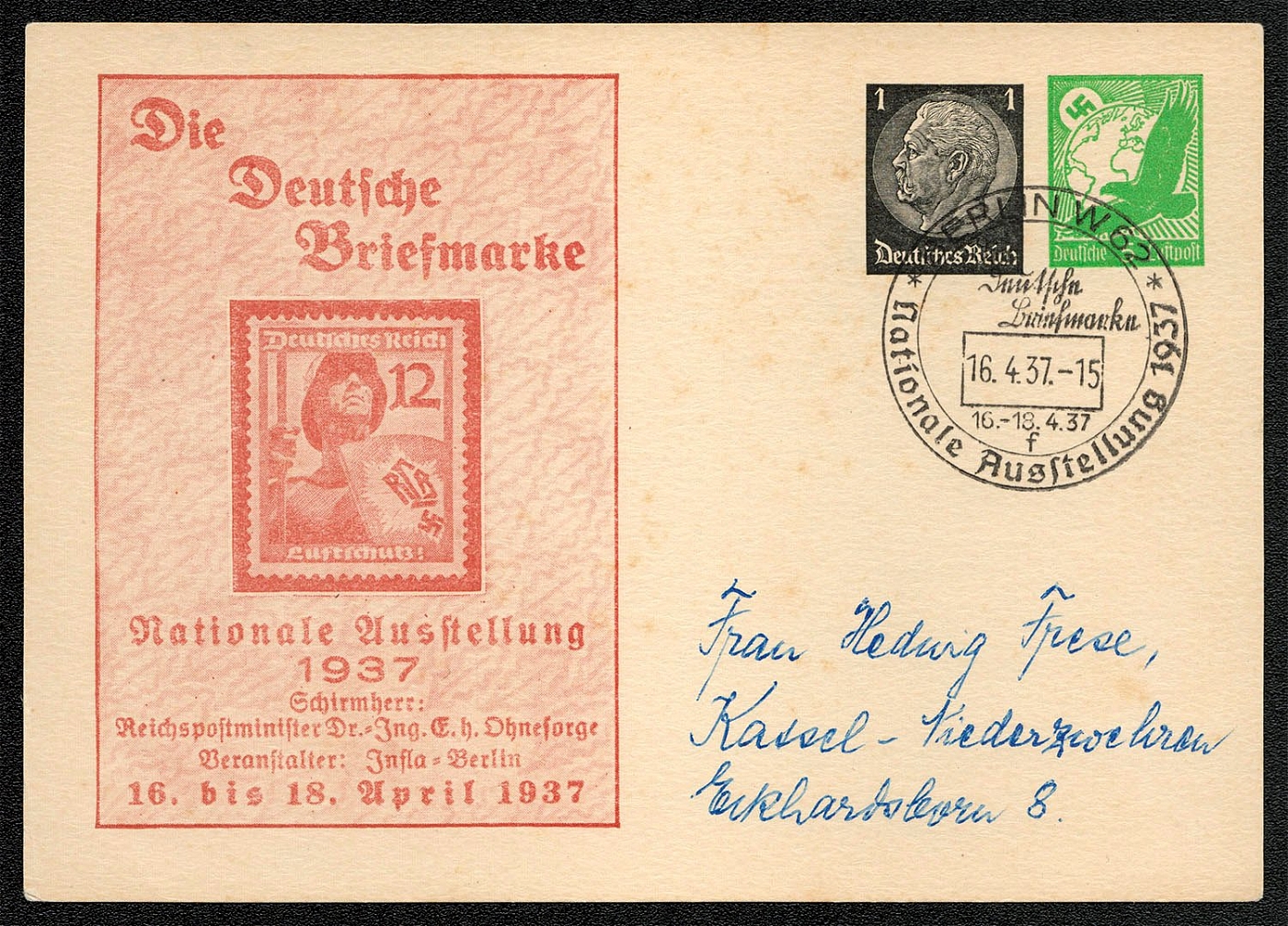
1937 A privately printed postal card depicting the 12 Rpf RLB stamp. The sponsor of the exhibition was Reichspostminister Dr. Ing. E. H. Ohneforge
Berlin 16 April 1937 Postal Station “f” A privately printed postal card depicting the 12 Rpf RLB stamp. The sponsor of the exhibition was Reichspostminister Dr. Ing. E. H. Ohneforge. It was organized by Infla-Berlin.
Sold for:
$10
522
$10
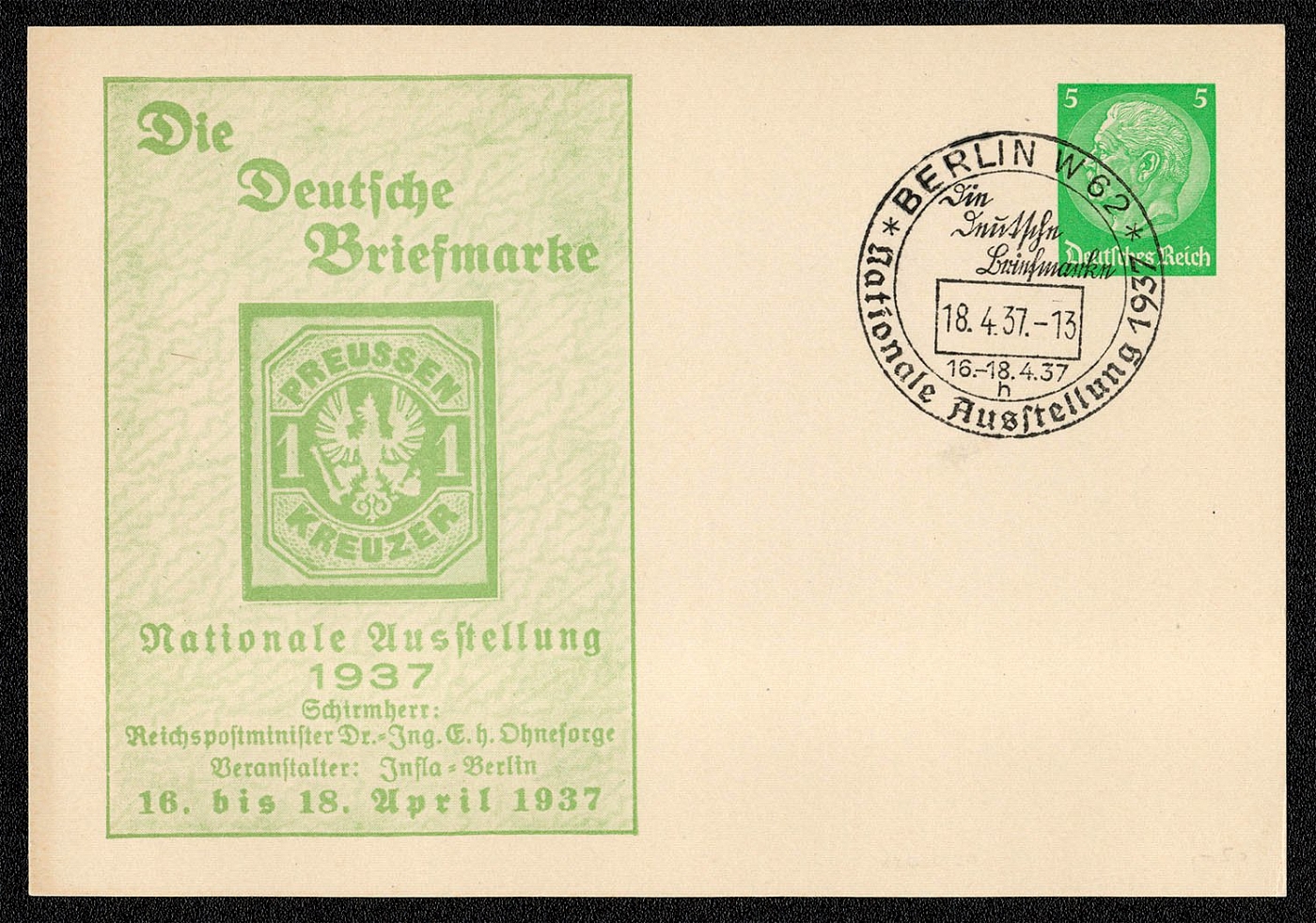
1937 A privately printed postal card depicting a German States (Prussia) stamp. The sponsor of the exhibition was Reichspostminister Dr. Ing. E. H. Ohneforge
Berlin 18 April 1937 Postal Station “h” A privately printed postal card depicting a German States (Prussia) stamp. The sponsor of the exhibition was Reichspostminister Dr. Ing. E. H. Ohneforge. It was organized by Infla-Berlin.
Sold for:
$10
523
$10
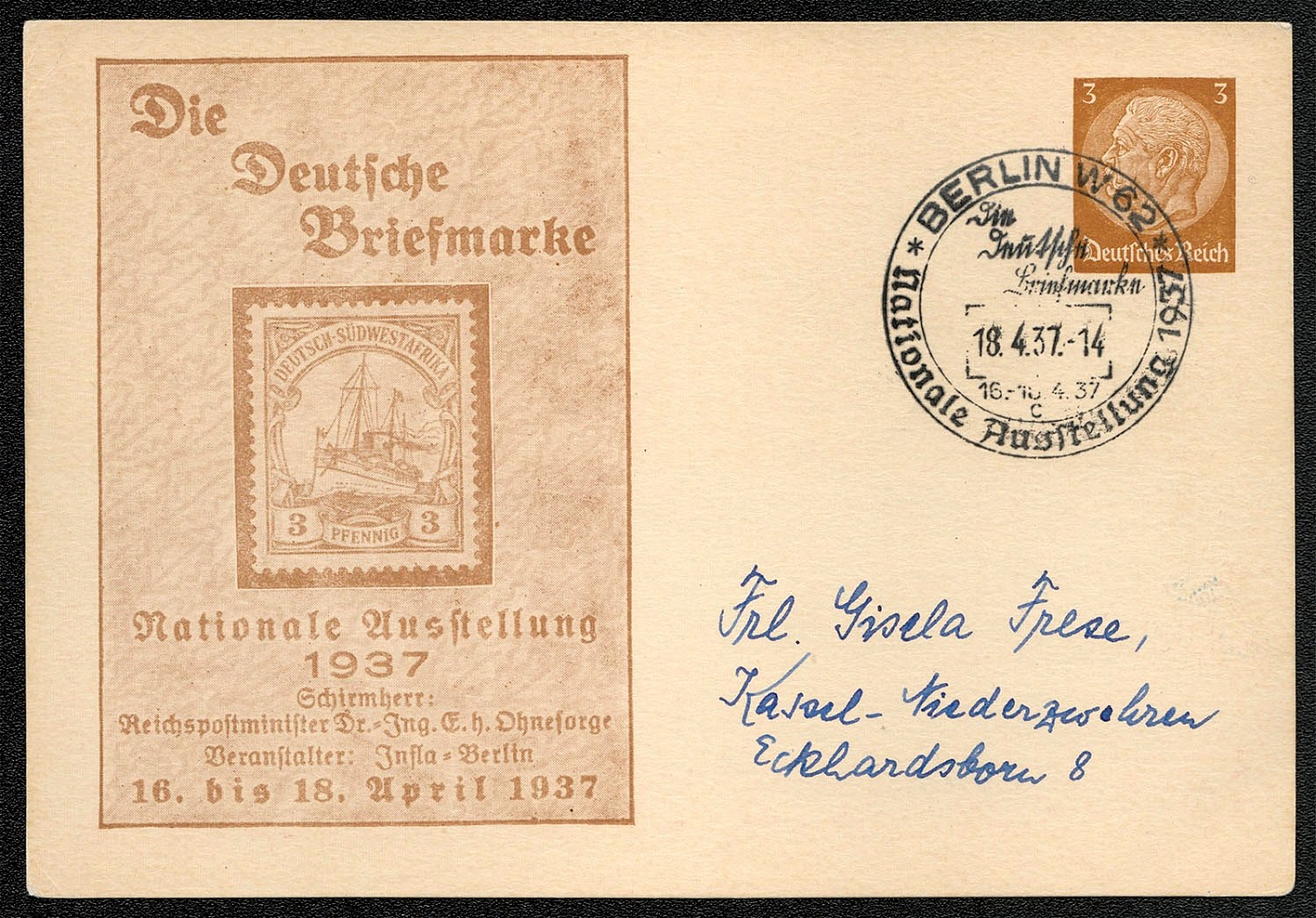
1937 A privately printed postal card depicting the German Colonies adhesive. The sponsor of the exhibition was Reichspostminister Dr. Ing. E. H. Ohneforge
Berlin 18 April 1937 Postal Station “c” A privately printed postal card depicting the German Colonies adhesive. The sponsor of the exhibition was Reichspostminister Dr. Ing. E. H. Ohneforge. It was organized by Infla-Berlin.
Sold for:
$10
524
-
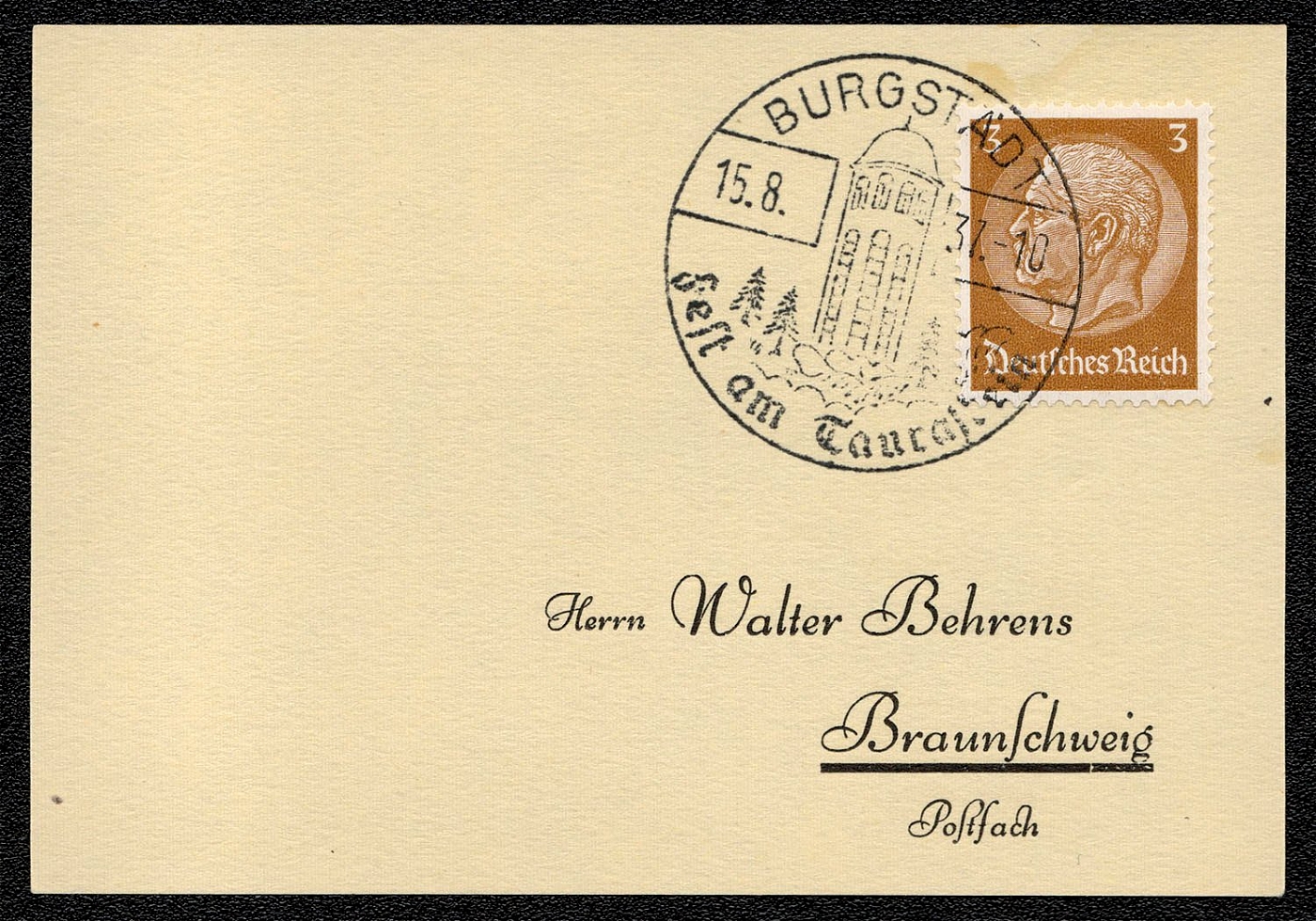
1937 Scott 416 with Special Postmark Burgstadt
Scott 416 with Sonderstempel (special cancellation) postmarked Burgstadt, 15 August 1937. The cancellation cannot be translated at this time, but it depicts Burgstadt’s 13,h century Romanesque chapel. Burgstadt was a very small village on the left bank of the Tauber River. Although listed in the 1929 edition of Baedeker’s Southern Germany.
Unsold
525
-
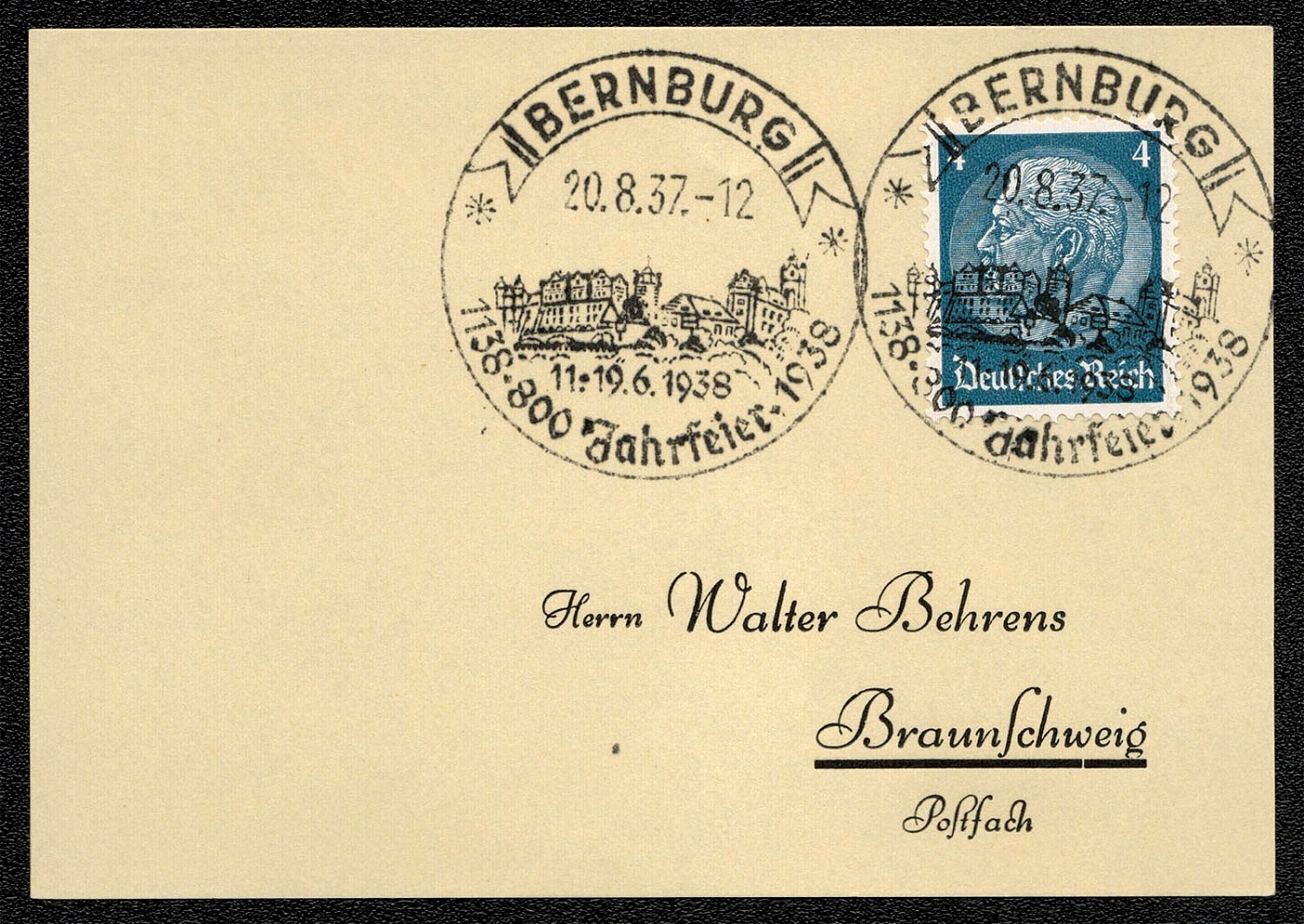
1937 Scott 417 with Special Postmark Bernberg
"Scott 417 with Sonderstempel (special cancellation) postmarked Bernberg, 20 August 1937. The cancellation publicizes the 800-Year Celebration of the town’s founding, 11-19 June 1938. Bernberg is noted as a pleasant town with 35,000 inhabitants a late Gothic church, and a fine old 14-18""1 century Schloss."
Unsold
526
-
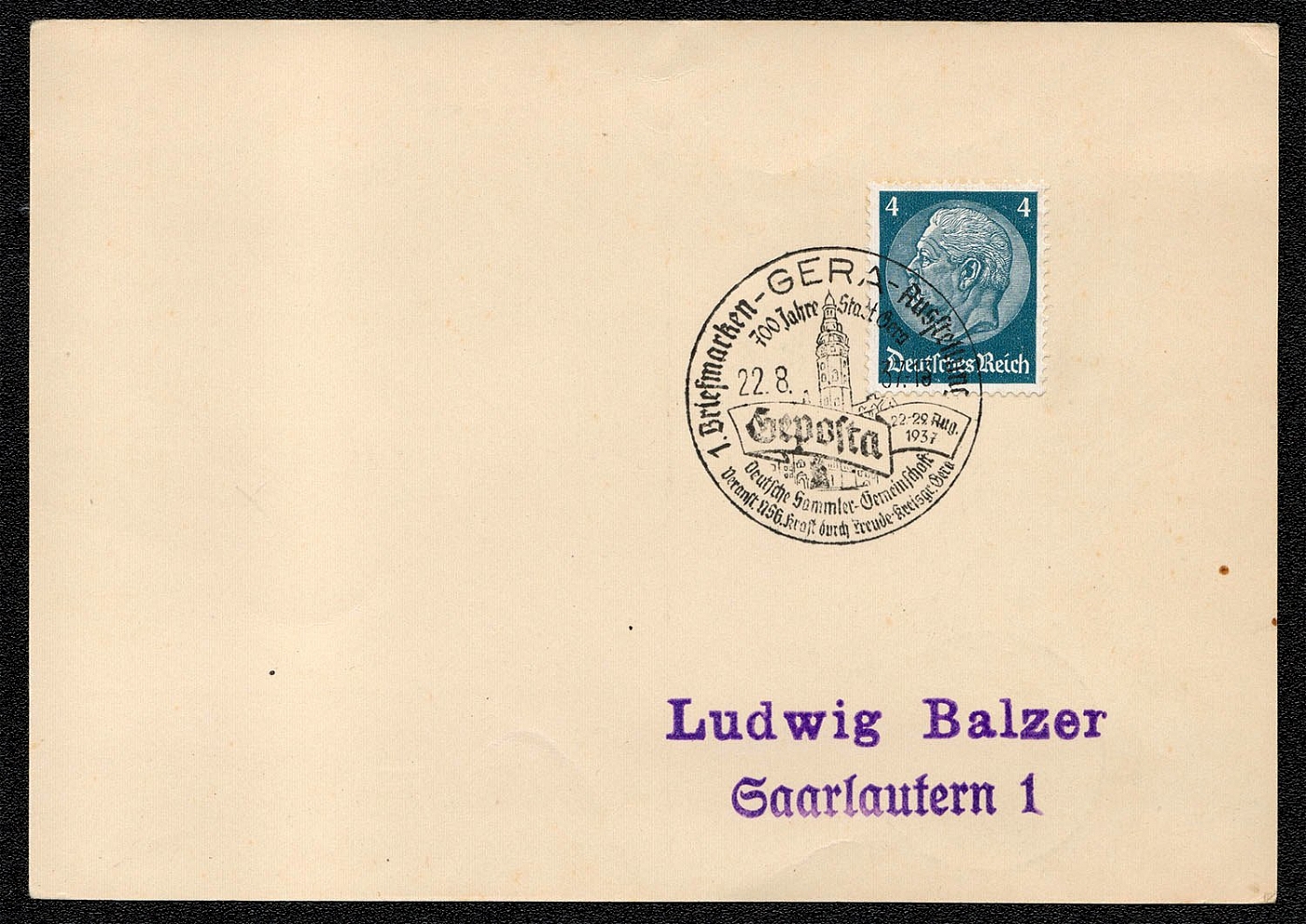
1937 Scott 417 with Special Postmark Gera
Scott 417 with Gefalligkeitsstempel (favor cancellation). Gera 22 August 1937 The cancellation reads: Geposta The First Postage Stamp Exhibition of Gera, The 700 Year Old City 22-29 Aug. 1937 German Collectors Society of the NSG Strength through Joy ■ County Group • Gera
Unsold
527
$10
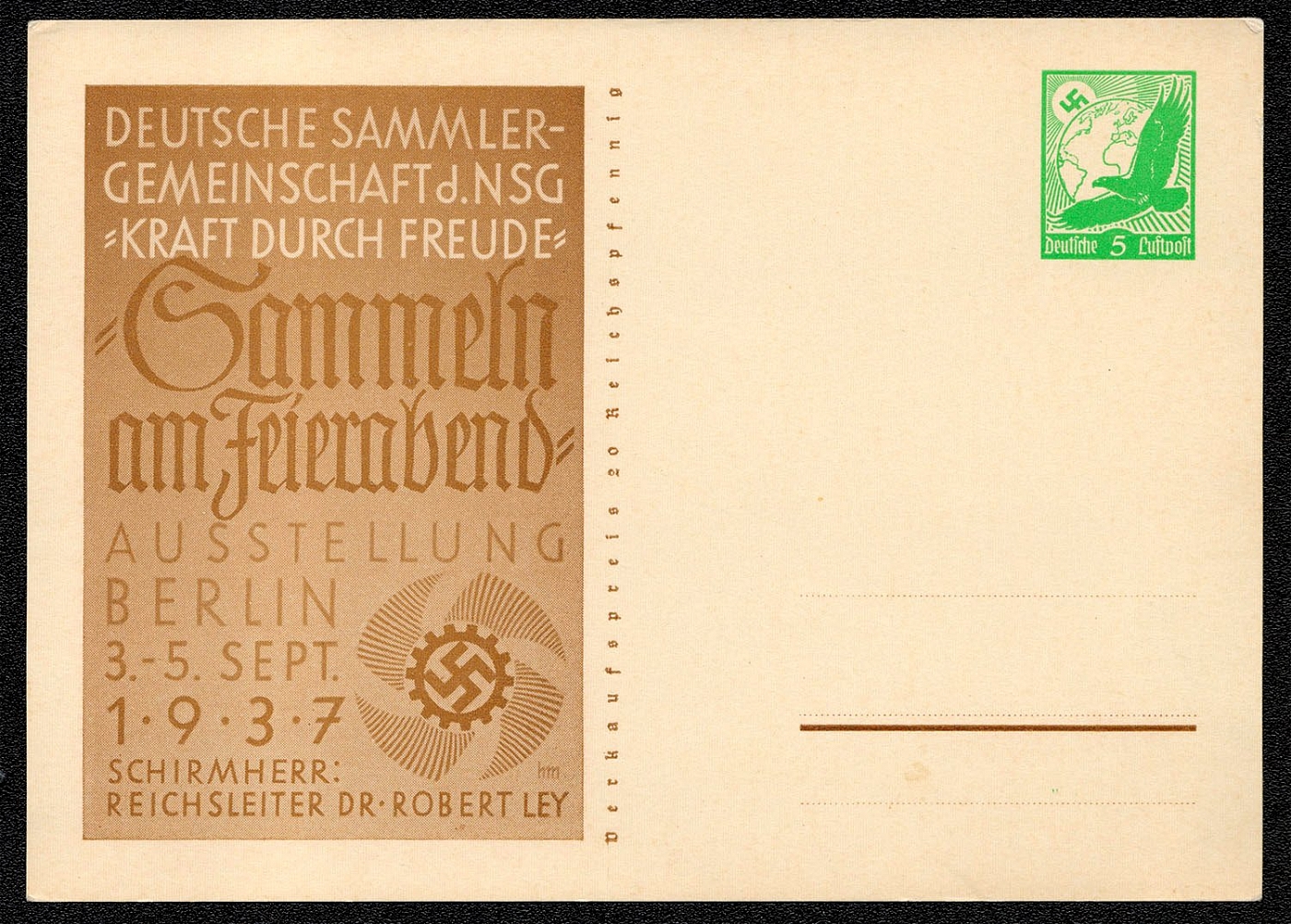
1937 Exhibition in Berlin The German Collectors Association of the NS Strength through Joy Organization “Collecting During Leisure Time ”
"Ausstellung Berlin 3. - 5. Sept. 1937 Schirmherr: Reichsleiter Dr. Robert Ley The German Collectors Association of the NS Strength through Joy Organization “Collecting During Leisure Time ” Exhibition Berlin 3rd - 5""' Sept. 1937. Patron: Reichsleiter Dr. Robert Ley The German Stamp Collectors Association ordered this special post card for the KdF Philatelic Exhibition in Berlin and sold it for 20 Reichspfennig. The 5 Rpf imprinted air post stamp is identical to the adhesive issue of 1934. The card was valid through 31 December 1939."
Sold for:
$10
528
$6
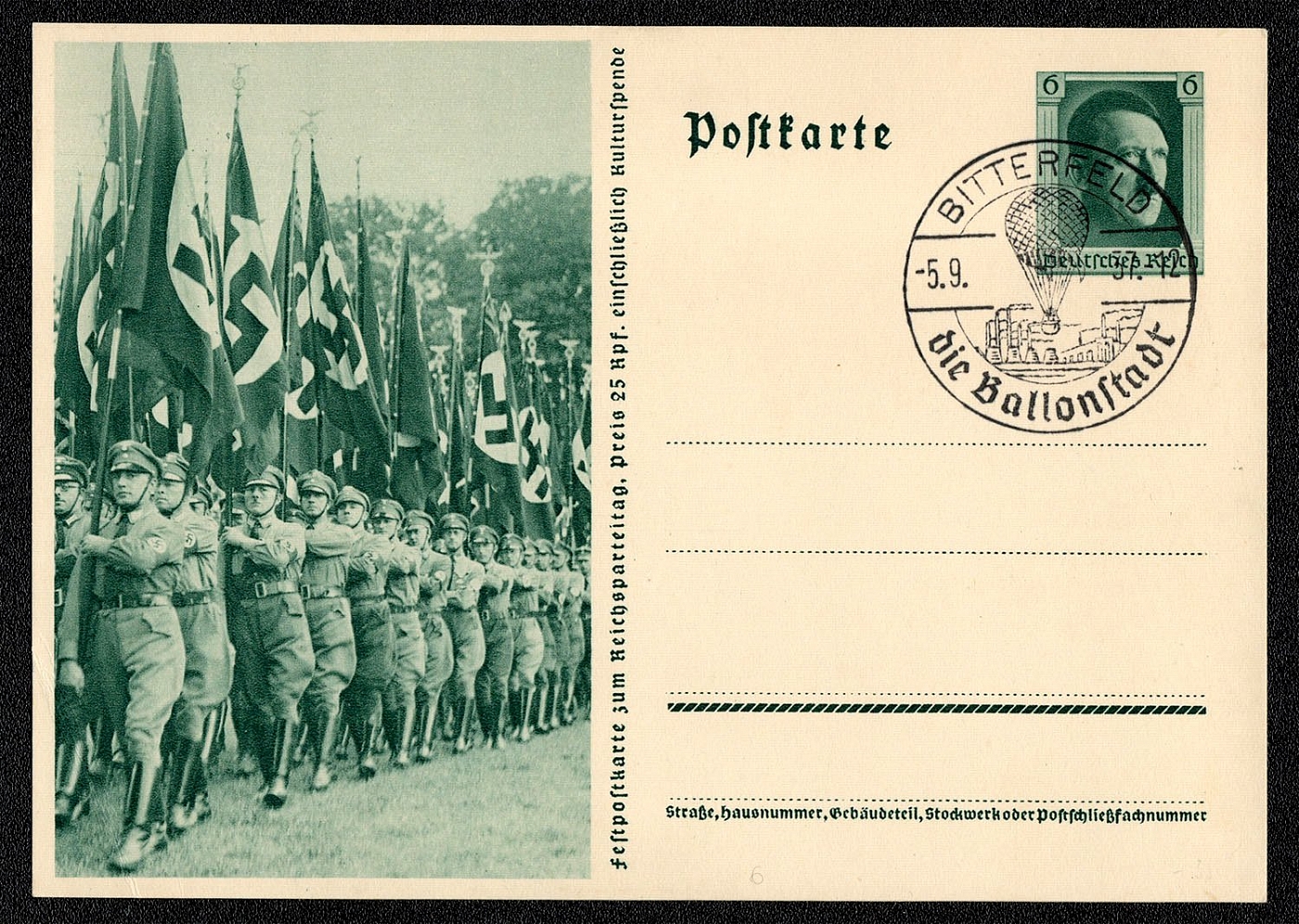
1937 Festival Postcard for the National Party Rally Michel P 264/04
Festival postal card for the National Party Rally. The price of 25 Rpf. includes the Culture Fund. Michel P 264/04 with Gefalligkeitsstempel (favor cancellation) dated 5 September 1937 in Bitterfeld, The Balloon City.
Sold for:
$6
529
$5
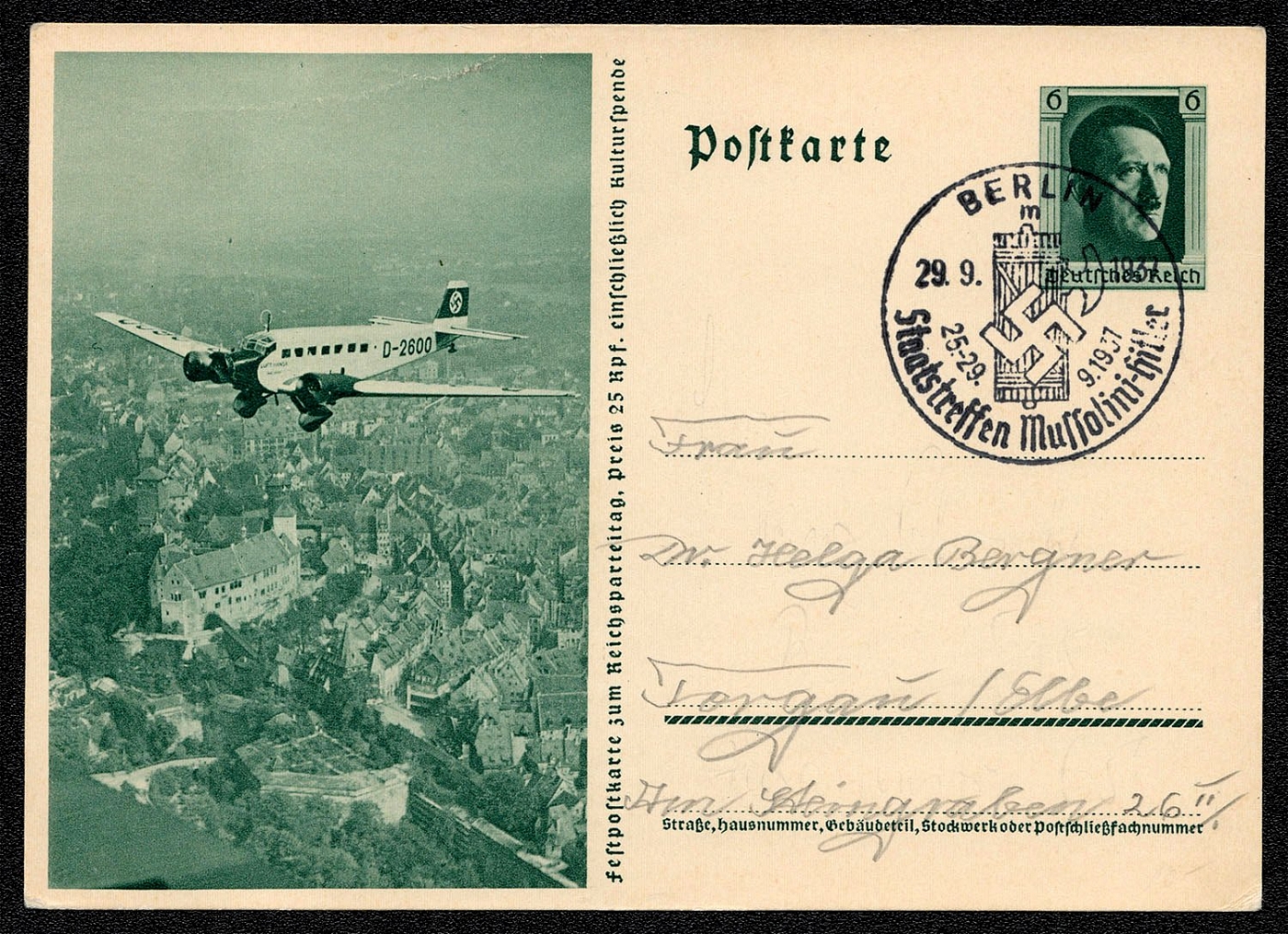
1937 Mi P 264/08 postally used 29 September 1937, but with a Berlin, Station “m” cancellation.
Mi P 264/08 postally used 29 September 1937, but with a Berlin, Station “m” cancellation.
Sold for:
$5
530
$5
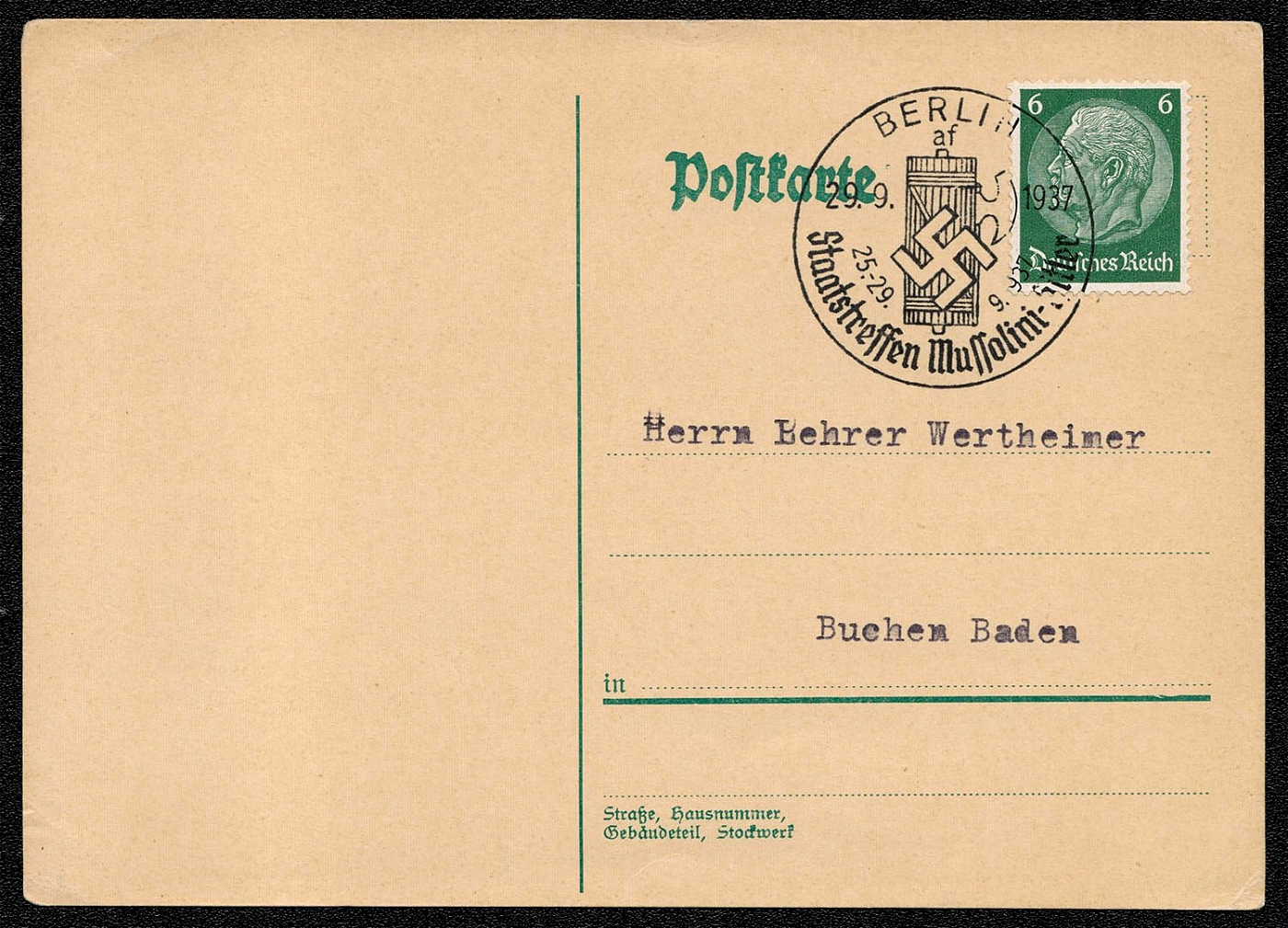
1937 Postcard franked with Sc 419 postally used with a 29 September 1937 cancellation commemorating Mussolini’s state visit. Posted in Berlin, Station “af.”
Postcard franked with Sc 419 postally used with a 29 September 1937 cancellation commemorating Mussolini’s state visit. Posted in Berlin, Station “af.”
Sold for:
$5
531
-
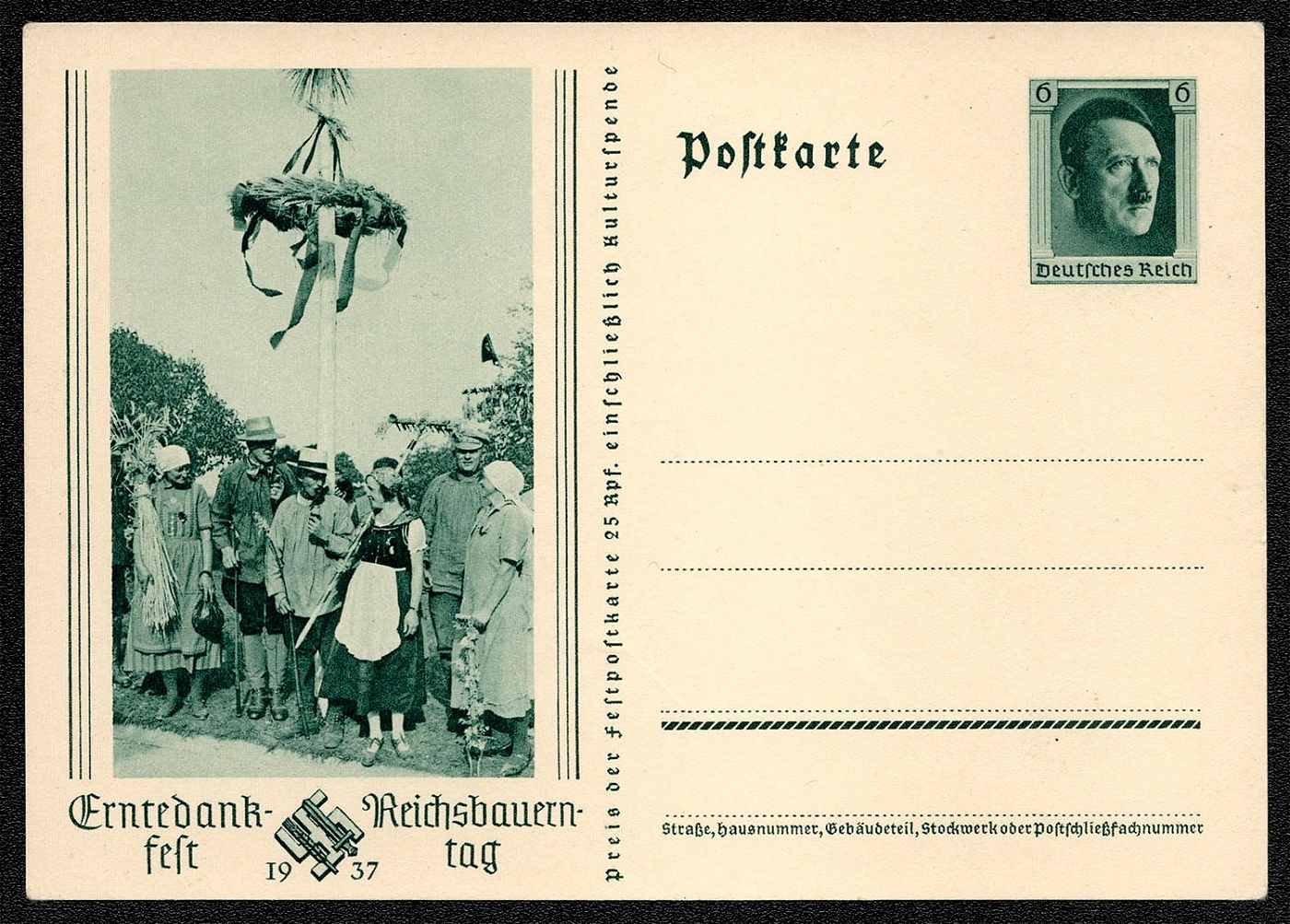
1937 The official post card commemorating both Harvest Day and Farmers Day
Farmers with Harvest Garland The official post card commemorating both Erntedanktag (Harvest Day) and Reichsbauerntag (Farmers Day). The photo of the farmers and the harvest garland was taken by Heinrich Hoffman. The card was issued on 1 October 1937 and remained valid until 30 June 1938. The cost was 25 Rpf. with 19 Rpf. going to the Kulturfonds-Zuschlag (Culture Fund surtax).
Unsold
532
-
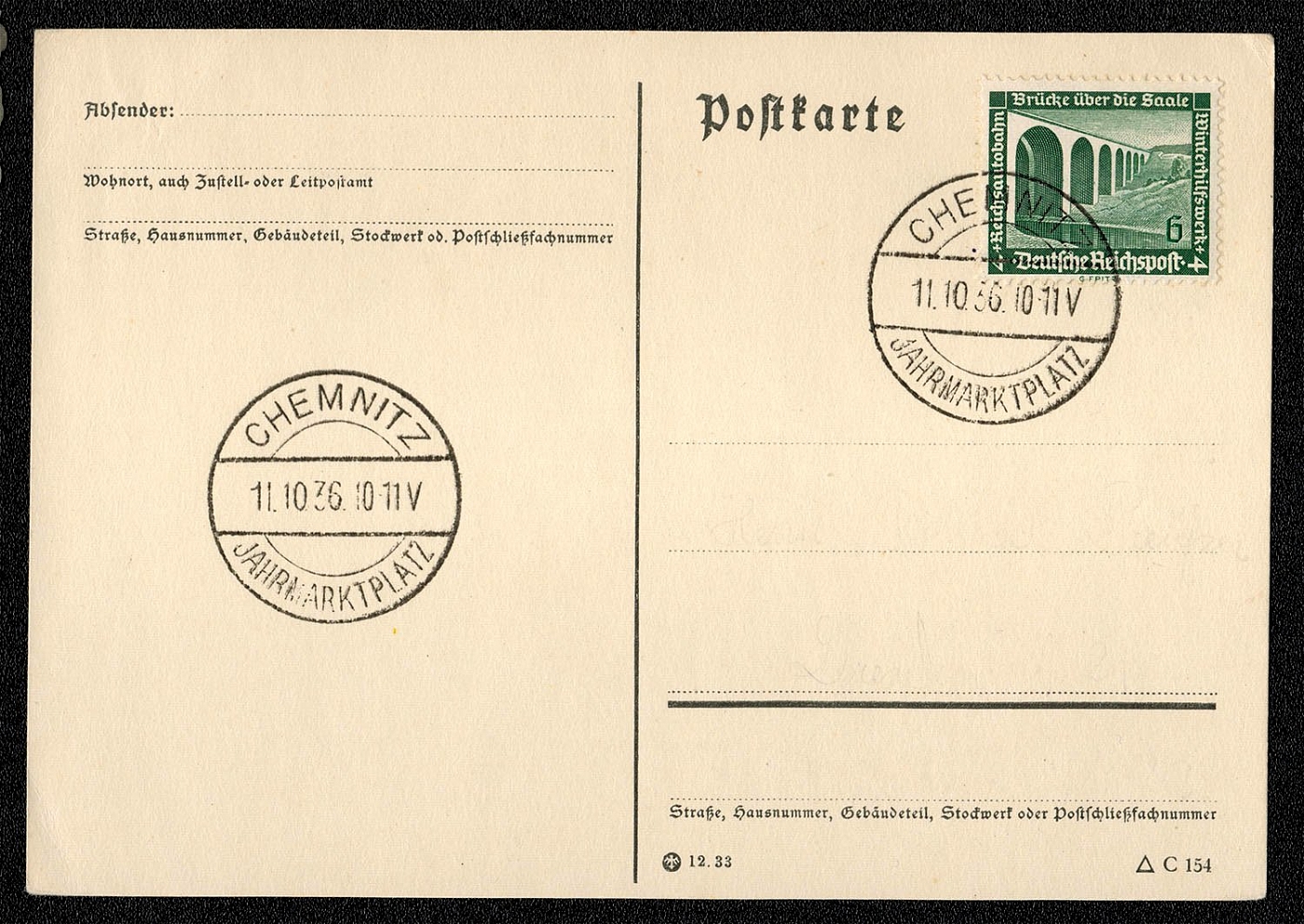
1937 Scott B96 tied to post card with favor cancel commemorating the Chemnitz
Scott B96 tied to post card with favor cancel commemorating the Chemnitz Jahrmarkt Platz. dated 11 October 1936. A Jahrmarkt is an annual fair. Chemnitz was the third city of Saxony and one of the most important manufacturing centers of the Third Reich. In the mid-1930s its population was approximately 350,000 inhabitants.
Unsold
533
$5
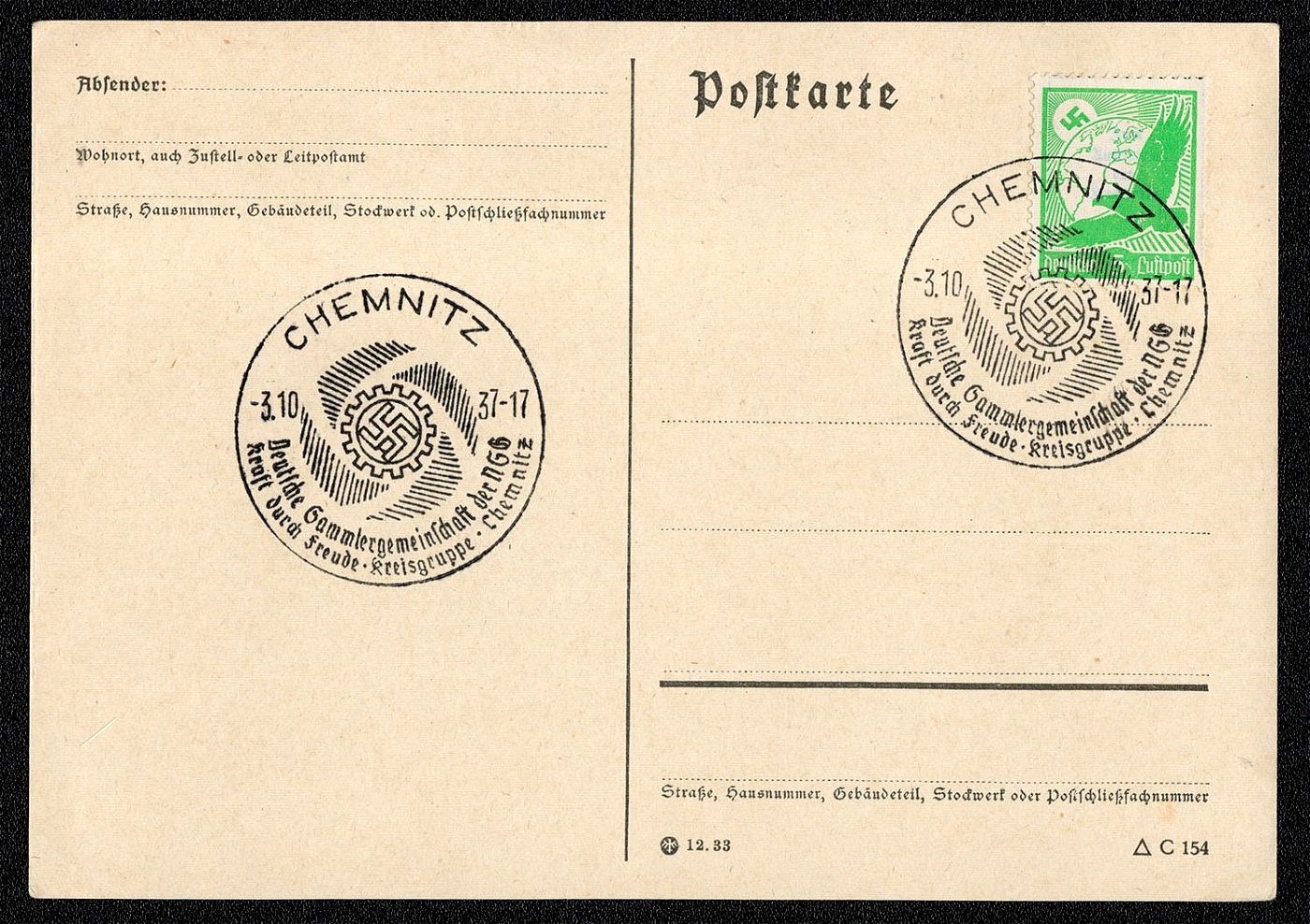
1937 Scott C46 with Special Postmark Chemnitz
Scott C46 with Gefalligkeitsstempel (favor cancellation). Chemnitz 3 October 1937 The cancellation reads: German Collectors Society of the National Socialist Volk Welfare Strength through Joy • County Group • Chemnitz
Sold for:
$5
534
-
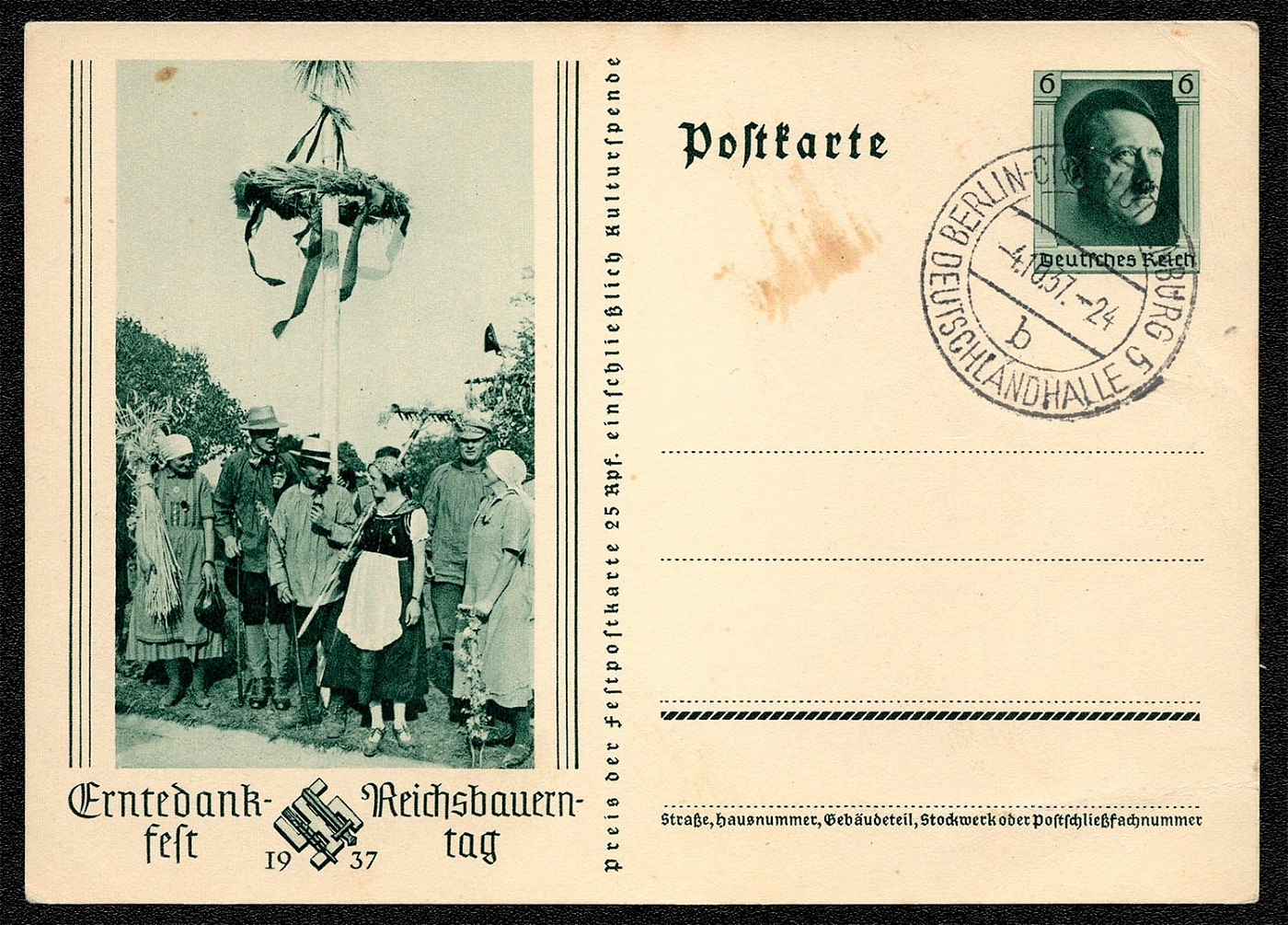
1937 Michel P 265 with Special Postmark Berlin-Charlottenburg
Michel P 265 with Gefalligkeitsstempel (favor cancellation) postmarked: Berlin-Charlottenburg 5 Postal Station “b” Deutschlandhalle 4 October 1937.
Unsold
535
-
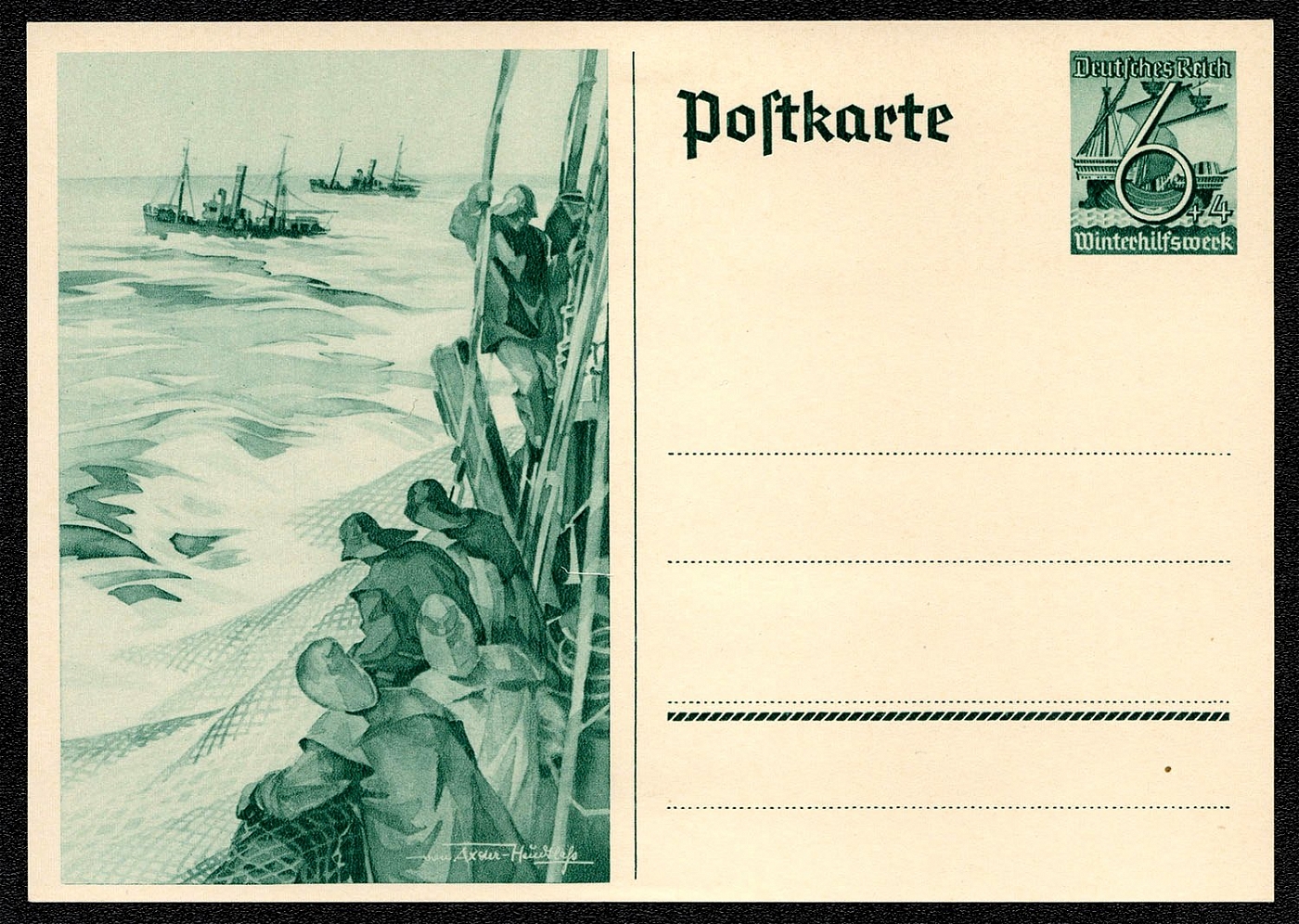
1937 Von Axster-Heudtlass designed the official postcard for the 1937 Winterhilfe
"Von Axster-Heudtlass also designed the official postal card for the 1937 Winterhilfe. The imprinted stamp depicts a 15""' century sailing ship. The illustration depicts Hochseefischer (deep-sea fishermen) lifting trawls. The card was issued 22 November 1937 and remained valid until 30 June 1938."
Unsold
536
-
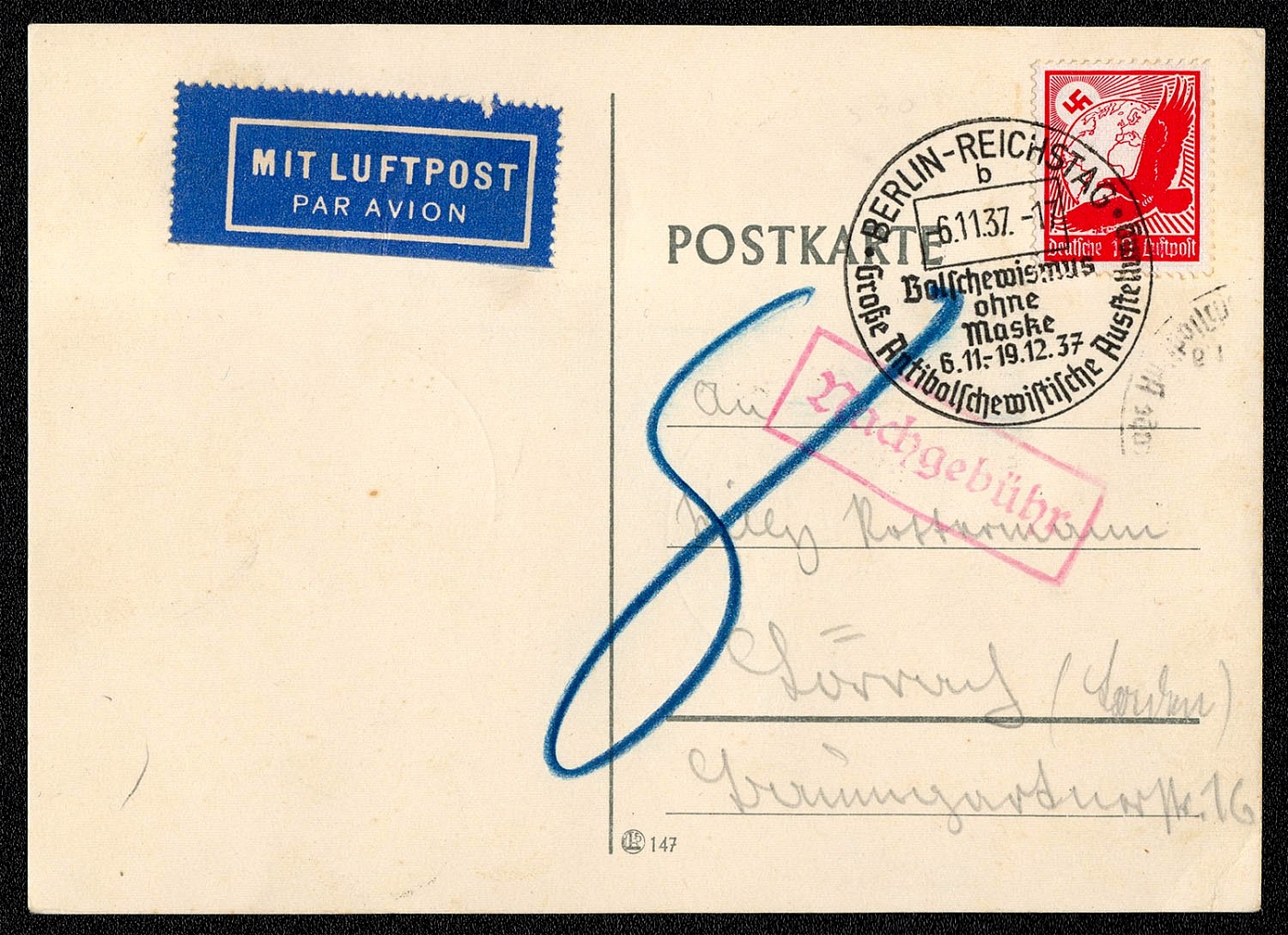
1937 Postcard franked with Sc C47 The Great Anti-Communist Exhibition Bolshevism Unmasked
A philatelically prepared, postally used card franked with Sc C47, the 10 Rpf air post stamp. Mailed from Berlin on 6 November 1937 to Lorrach. This industrial town of approximately 18,000 in 1937 is on the Swiss border near Basel. (Postage Due). Additional franking of 1 Rpf (Sc 415) is cancelled on the reverse. The publicity cancellation from the Berlin-Reichstag Postal Station “b” promotes The Great Anti-Communist Exhibition Bolshevism Unmasked 6 November through 19 December 1937
Unsold
537
-
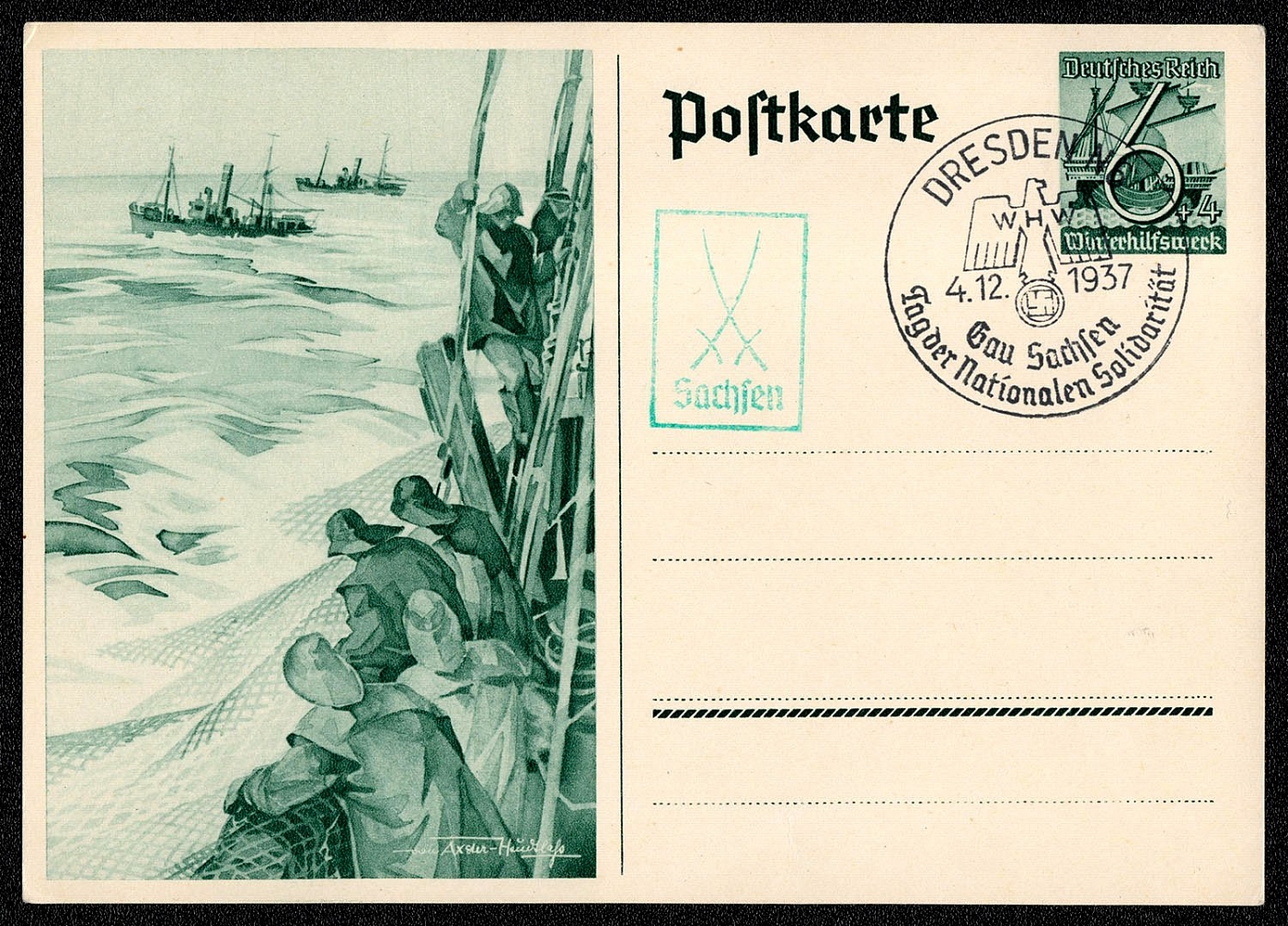
1937 Gau Sachsen Day of National Solidarity
Gau Sachsen Day of National Solidarity Michel P266 with Gefalligkeitsstempel (favor cancellation) postmarked Dresden, 4 December 1937.
Unsold
538
-
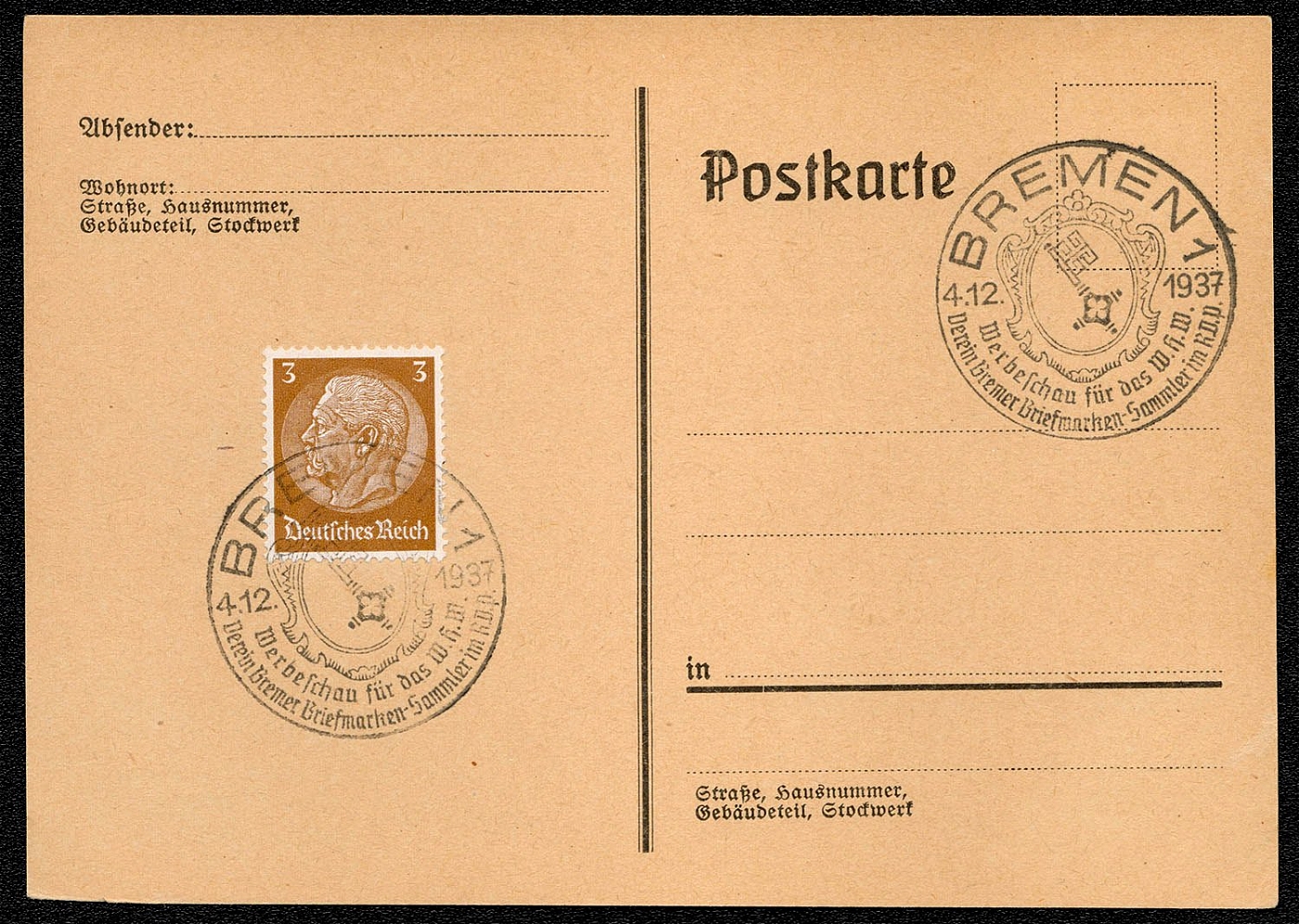
1937 Scott 416 with Special postmark Bremen Publicity Show for the Winterhilfswerk
Scott 416 with Gefalligkeitsstempel (favor cancellation) postmarked: Bremen 1 4 December 1937. The cancellation reads: Publicity Show for the Winterhilfswerk Bremer Stamp Collectors Club in the Reichsbund der Philatelisten.
Unsold
539
-
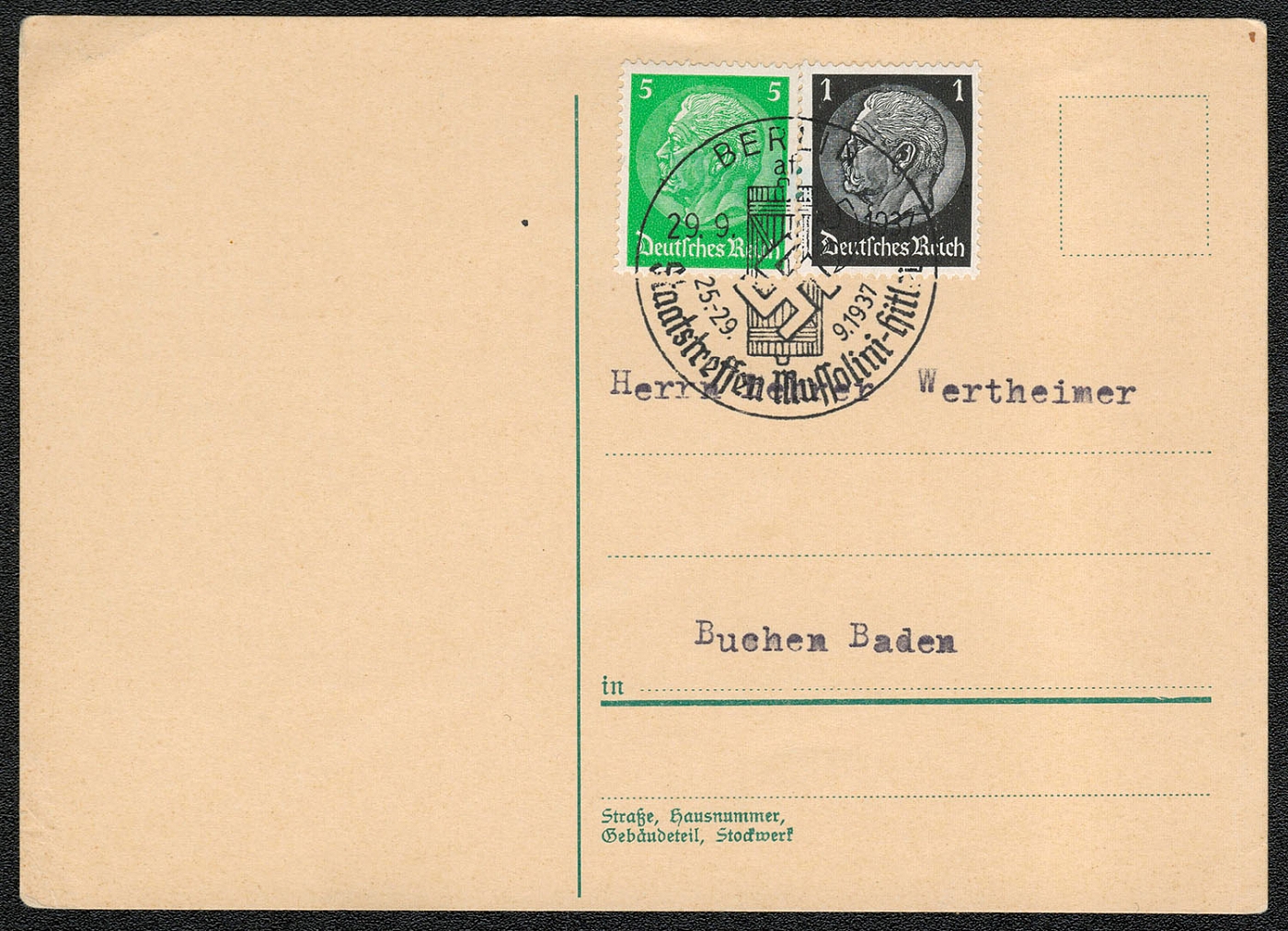
540
$5
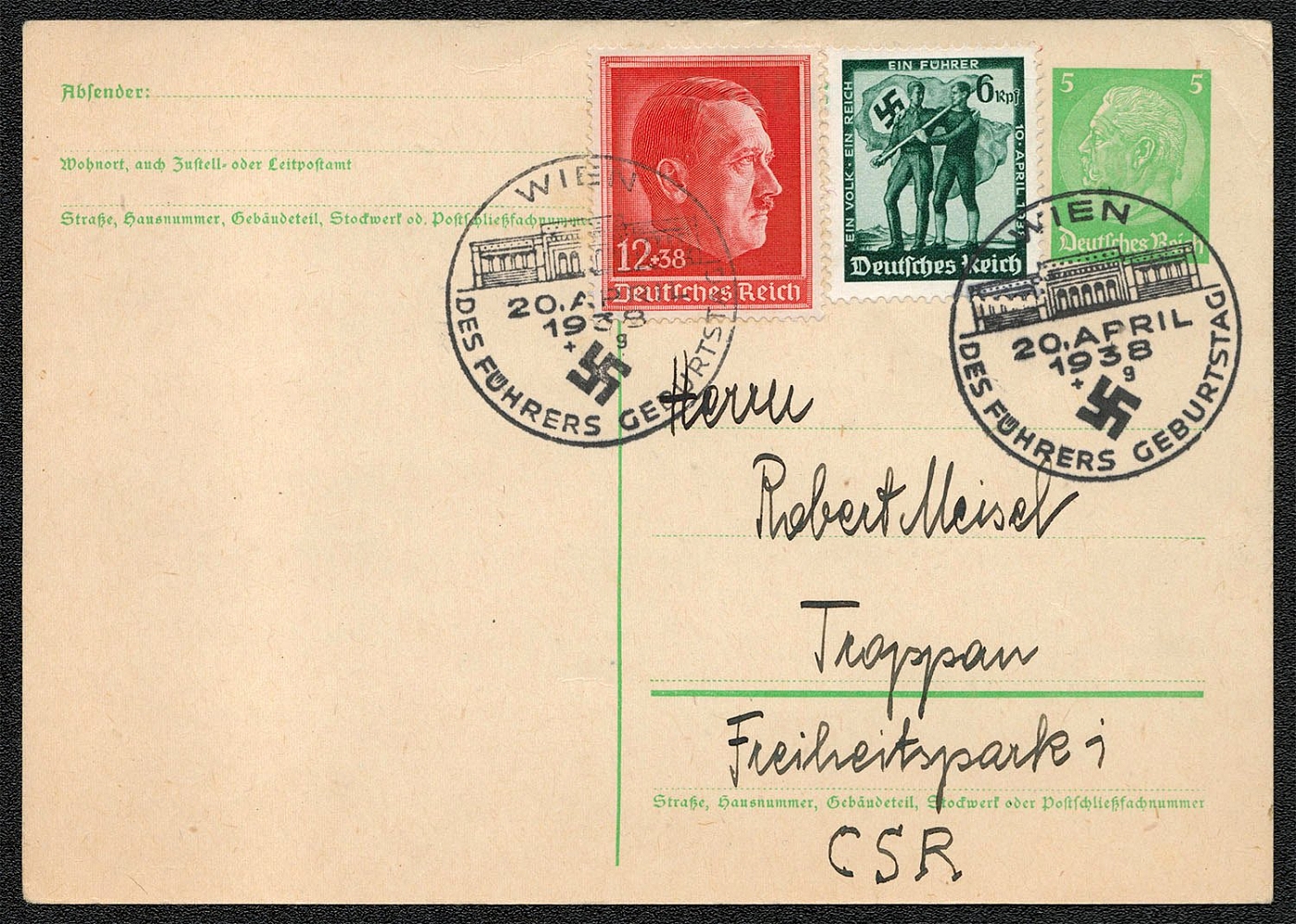
1938 Postcard with Special postmark Wien Fuehrer's birthday
1938 Postcard with Special postmark Wien Fuehrer's birthday
Sold for:
$5
541
$5
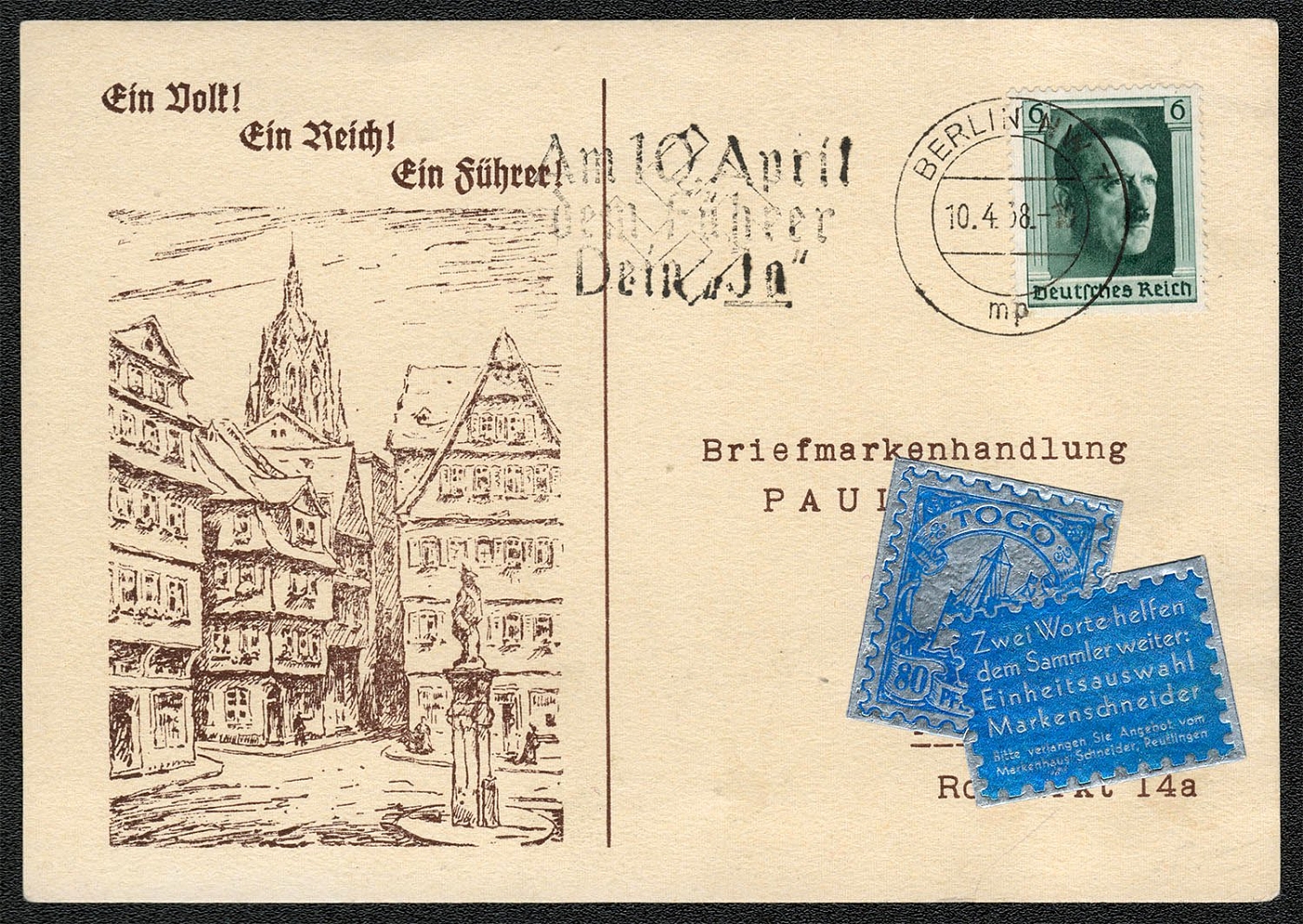
1938 Referendum in Austria Privately printed Volksabstimmung card franked with Scott B102a
Privately printed Volksabstimmung card franked with Scott B102a, presumably with a favor cancel from Postamt Berlin NW on 10 April 1938. It would appear that the card was advertising for a postage stamp shop (Briefmarkenhandlung) named Stamphaus Schneider in Reutlingen.
Sold for:
$5
542
$5
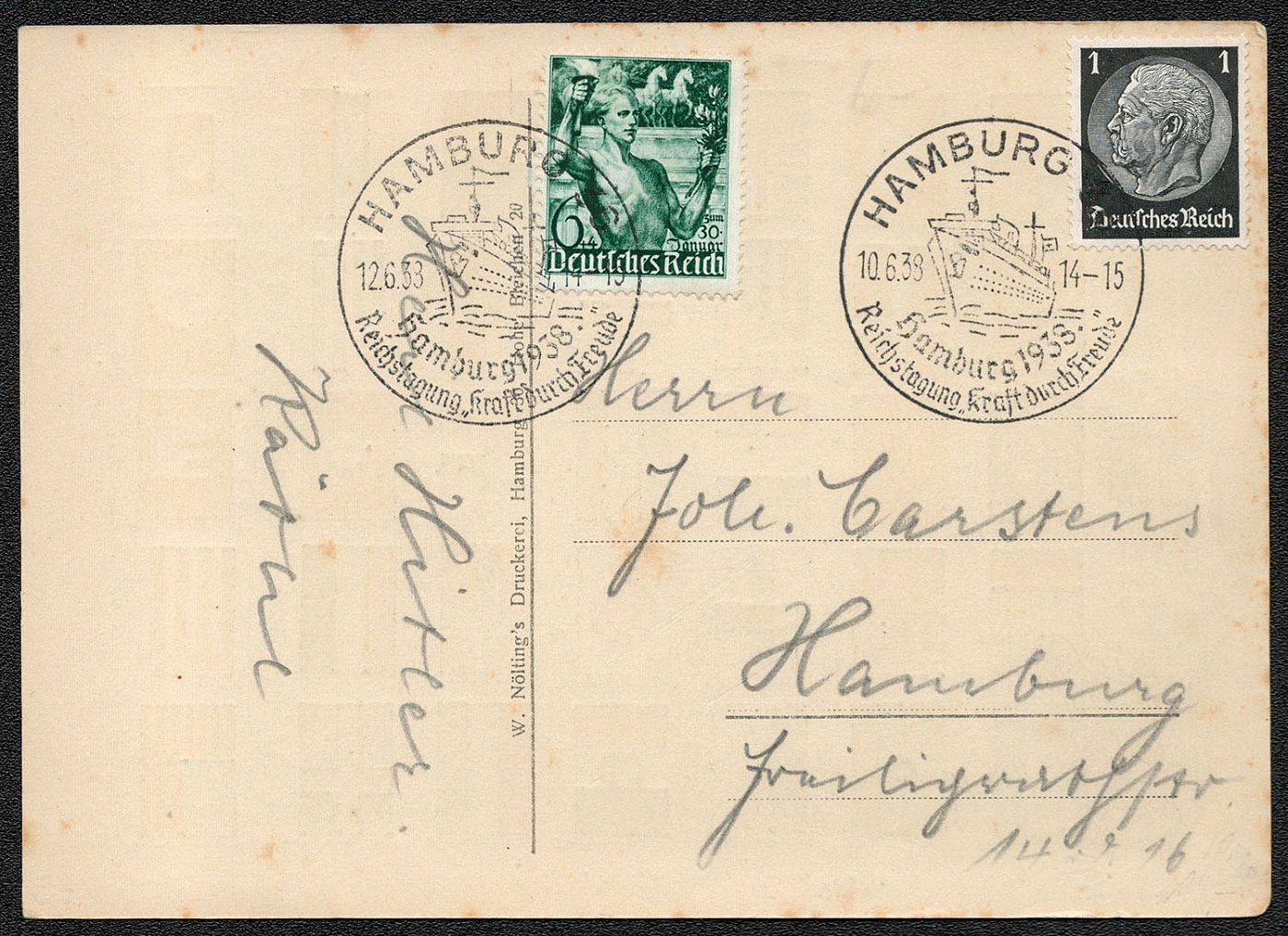
1938 Postcard with Flags and Special postmark Hamburg
1938 Postcard with Flags and Special postmark Hamburg
Sold for:
$5
543
$5
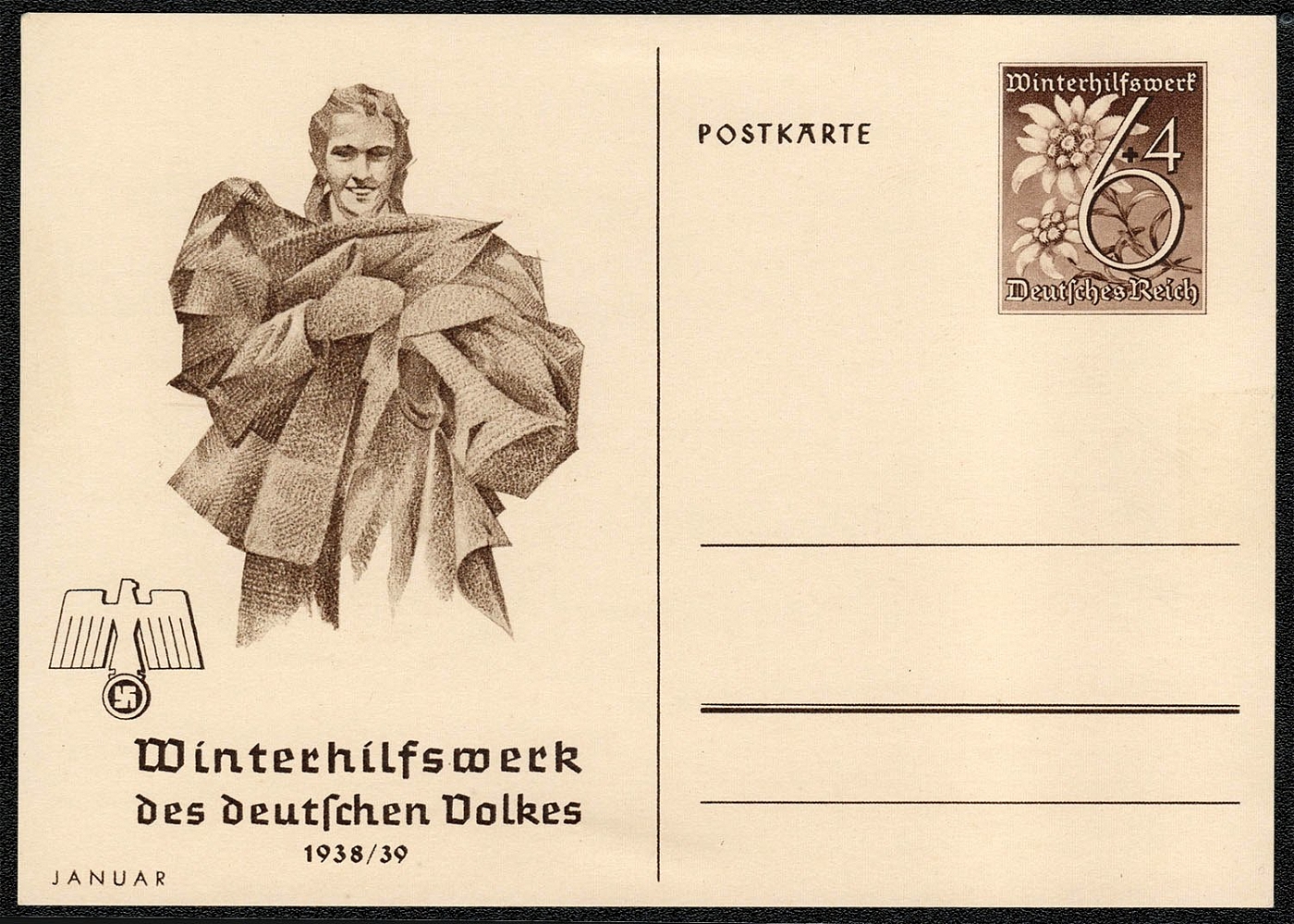
1939 Special cards for the 1938/39 Winter Relief Fund Michel P 274/04
The imprinted stamp, an edelweiss, and the cachet depicting a woman collecting clothes, were designed by von Axster-Heudtlass of Berlin for the Winterhilfe postal stationery. A different card was issued each month beginning 18 October 1938. All cards were valid through 30 September 1939. Michel P 274/04 (January).
Sold for:
$5
544
$5
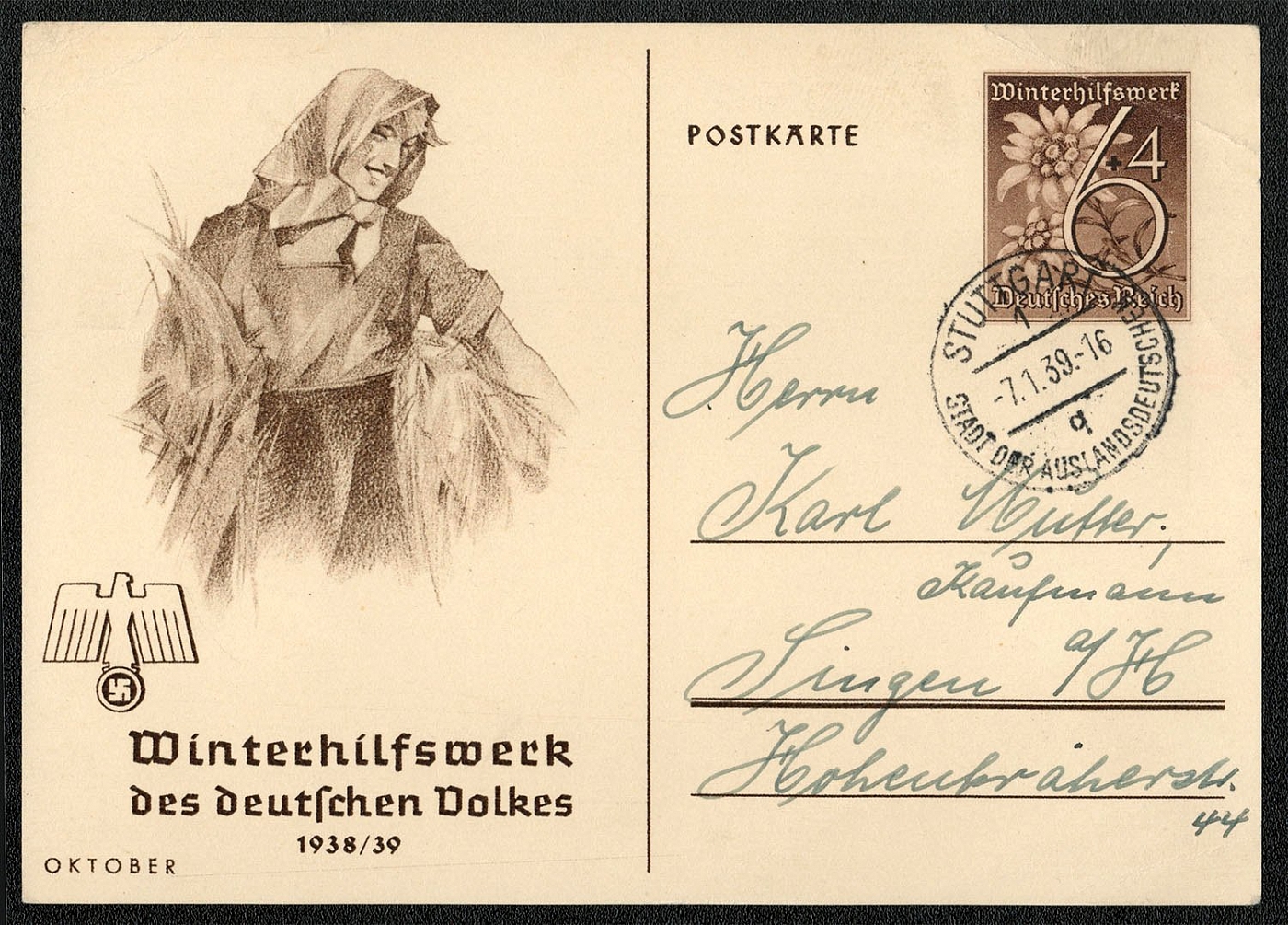
1939 Special cards for the 1938/39 Winter Relief Fund Michel P 274/01
The imprinted stamp, an edelweiss, and the cachet depicting a woman gathering the harvest were designed by von Axster-Heudtlass of Berlin for the Winterhilfe postal stationery. A different card was issued each month beginning 18 October 1938. All cards were valid through 30 September 1939. Michel P 274/01 (Oktober). Postally used and mailed from Stuttgart, The City of Germans Living Abroad 7 January 1939.
Sold for:
$5
545
$5
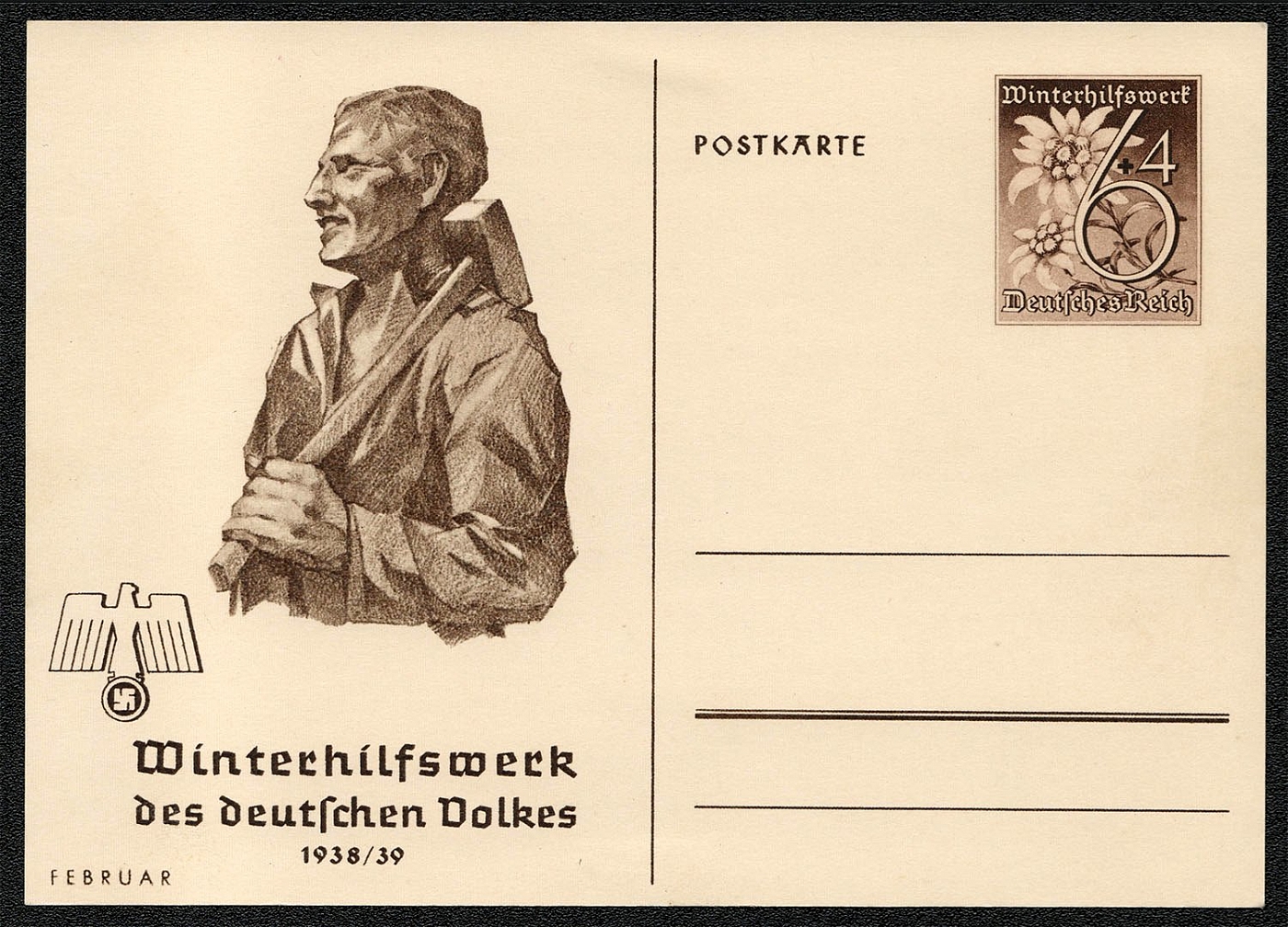
1939 Special cards for the 1938/39 Winter Relief Fund Michel P 274/05
The imprinted stamp, an edelweiss, and the cachet depicting a worker with a hammer, were designed by von Axster-Heudtlass of Berlin for the Winterhilfe postal stationery. A different card was issued each month beginning 18 October 1938. All cards were valid through 30 September 1939.
Sold for:
$5
546
$5
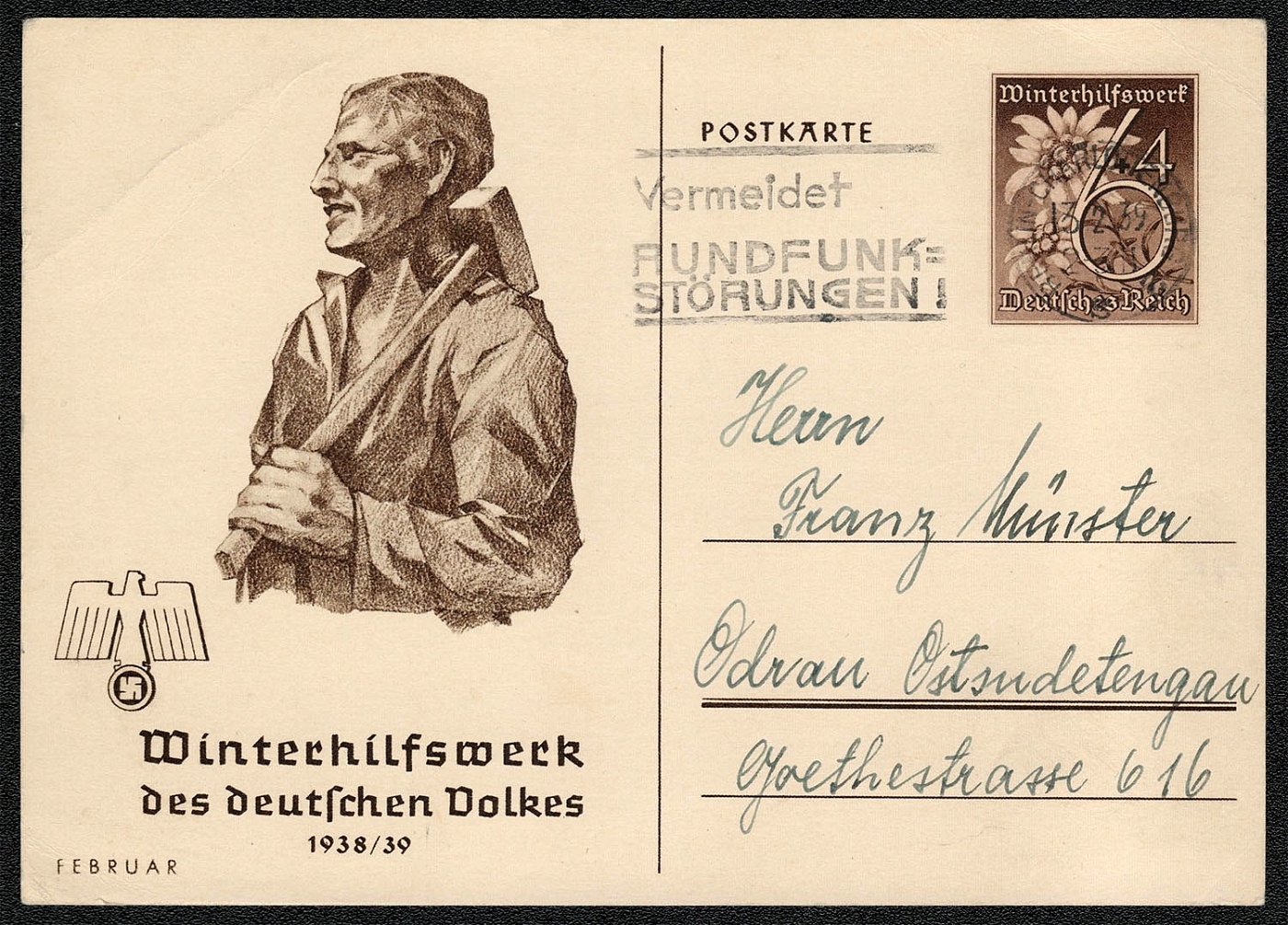
1939 Special cards for the 1938/39 Winter Relief Fund Michel P 274/05 Used
The imprinted stamp, an edelweiss, and the cachet depicting a worker with a hammer, were designed by von Axster-Heudtlass of Berlin for the Winterhilfe postal stationery. A different card was issued each month beginning 18 October 1938. All cards were valid through 30 September 1939. Michel P 274/05 (February) postally used with the slogan cancellation: Vermeidet RUNDFUNK= STORUNGEN! Avoid Radio Disturbance! Mailed 13 February 1939 from Berlin-Charlottenburg to Odrau Ostsudetengau (East Sudeten District).
Sold for:
$5
547
$5
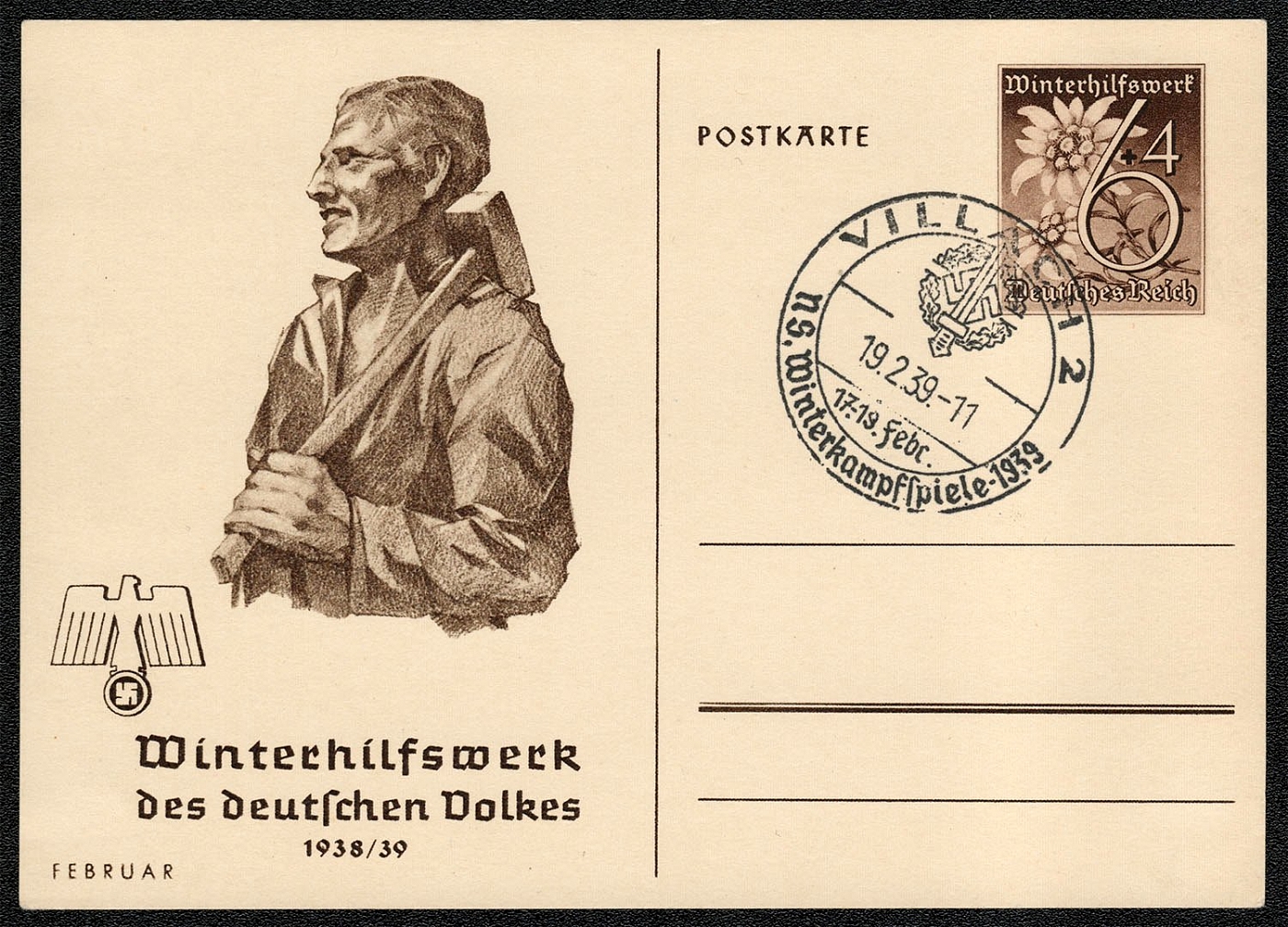
1939 Special cards for the 1938/39 Winter Relief Fund Michel Michel P 274/05
The imprinted stamp, an edelweiss, and the cachet depicting a worker with a hammer, were designed by von Axster-Heudtlass of Berlin for the Winterhilfe postal stationery. A different card was issued each month beginning 18 October 1938. All cards were valid through 30 September 1939. Michel P 274/05 (February) The Gefalligkeitsstempel (favor cancellation) dated 19 February 1939, Villach 2, illustrates the SA Sports Badge and publicizes the 1939 N.S. Winter Competitions, 17-19 February.
Sold for:
$5
548
-
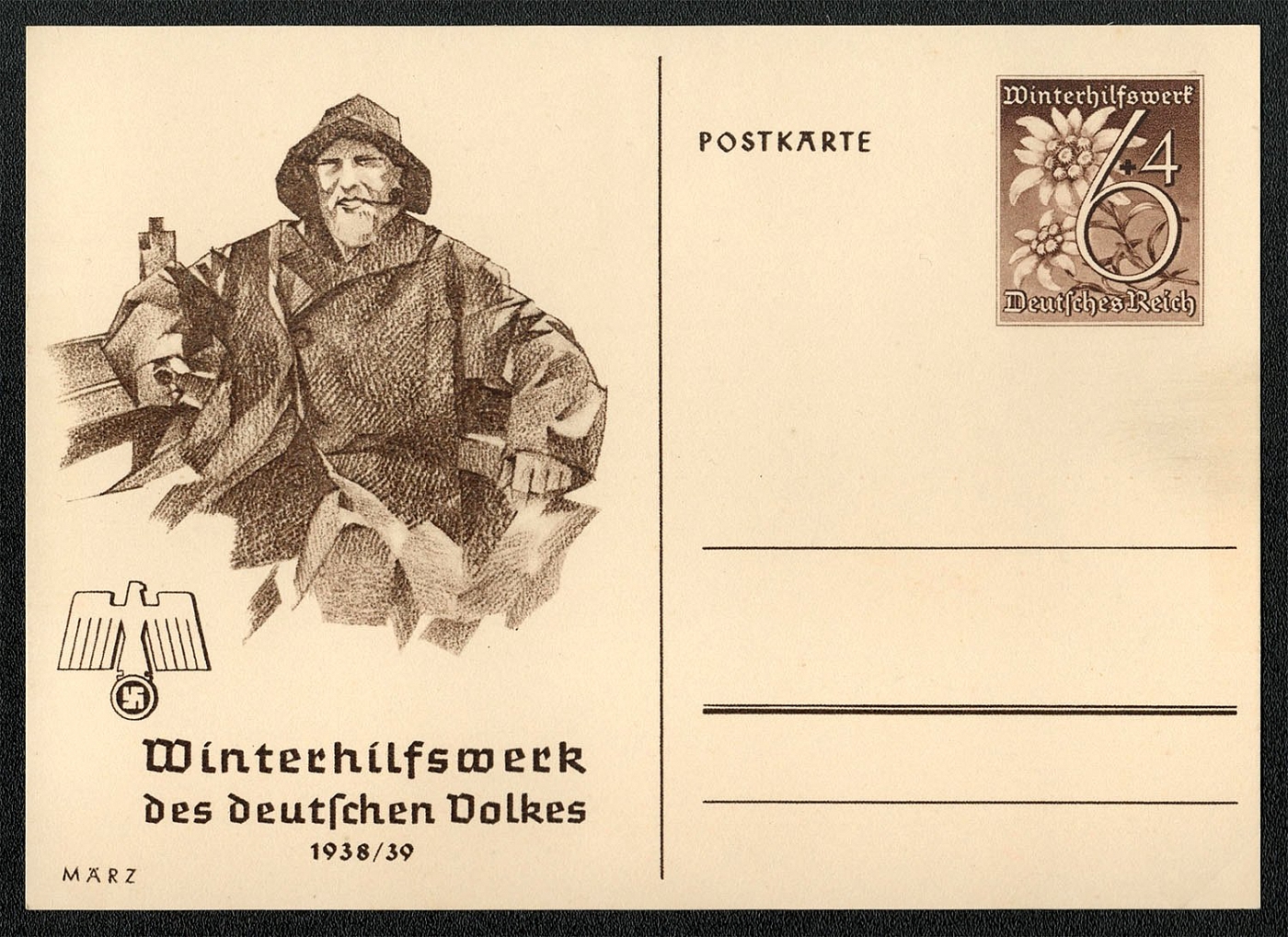
1939 Special cards for the 1938/39 Winter Relief Fund Michel P 274/06
The imprinted stamp, an edelweiss, and the cachet depicting a fisherman with oilskins, were designed by von Axster-Heudtlass of Berlin for the Winterhilfe postal stationery. A different card was issued each month beginning 18 October 1938. All cards were valid through 30 September 1939. Michel P 274/06 (Marz)
Unsold
549
-
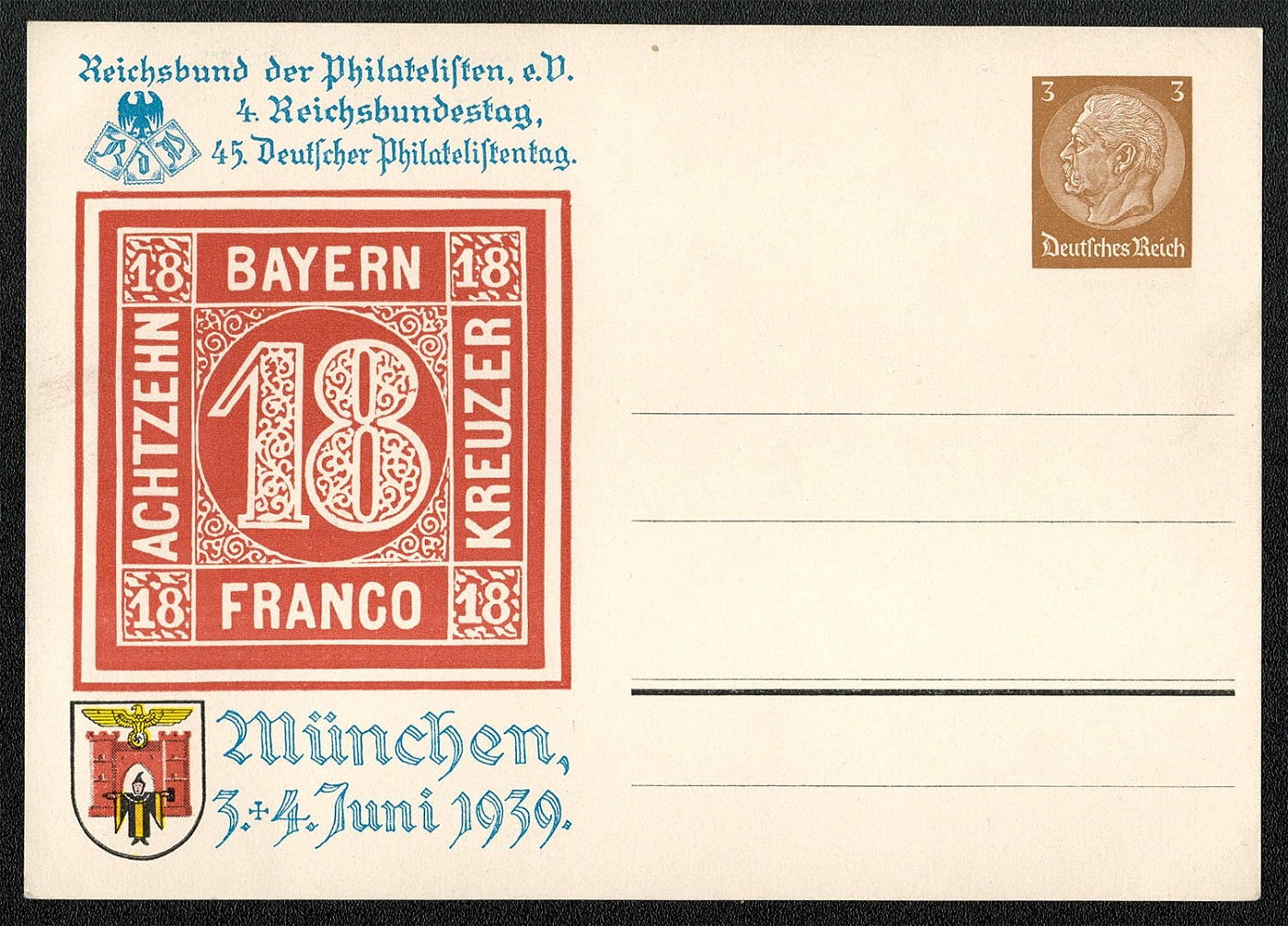
1939 Postcard issued for the forty-fifth German Philatelist Day in Munich
"Reich Alliance of Philatelists 4""' Reich Alliance Day, 45""' German Philatelist Day Munchen 3 and 4 June 1939 One of two special Privat-Postkarten issued for the forty-fifth German Philatelist Day in Munchen. The unused card above with the 3 Rpf yellow-brown Hindenberg is Michel PP 122. The cachet depicts the 18 Kreuzer value Bayern (Bavaria) issued in 1862 when it was an independent kingdom. (Bayern lost its postal autonomy in 1920.)"
Unsold
550
-
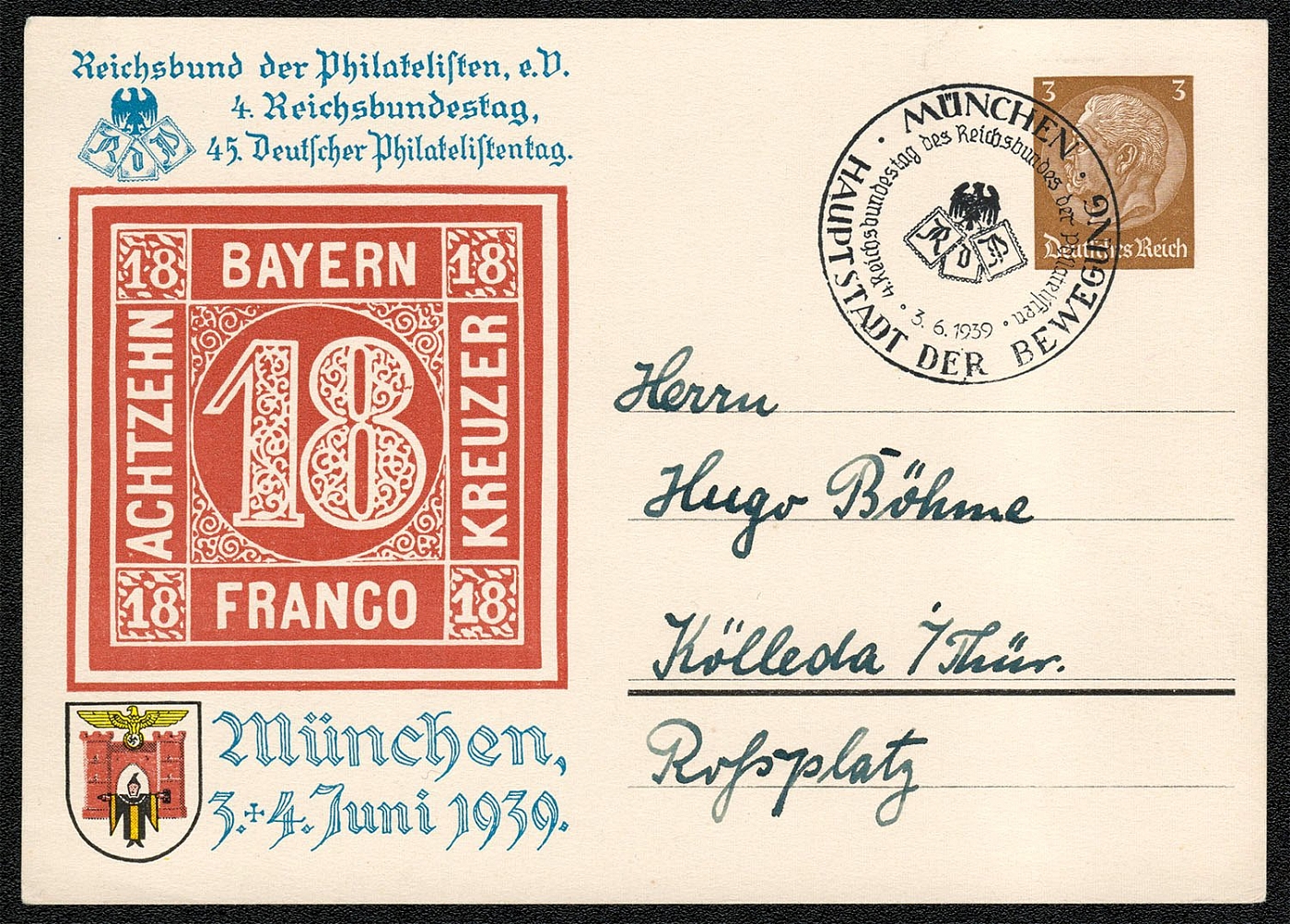
1939 Postcard issued for the forty-fifth German Philatelist Day in Munich Used
"Reich Alliance of Philatelists 4""' Reich Alliance Day, 45""' German Philatelist Day Munchen 3 and 4 June 1939 Privat-Postkarte (Michel PP 122) issued for the forty-fifth German Philatelist Day in Munchen. The cachet on the postally used card (3 June 1939) depicts the 18 Kreuzer value Bayern (Bavaria) issued in 1862 when it was an independent kingdom. The sonderstempel includes the logo of the Reichsbund der Philatelisten."
Unsold
551
-
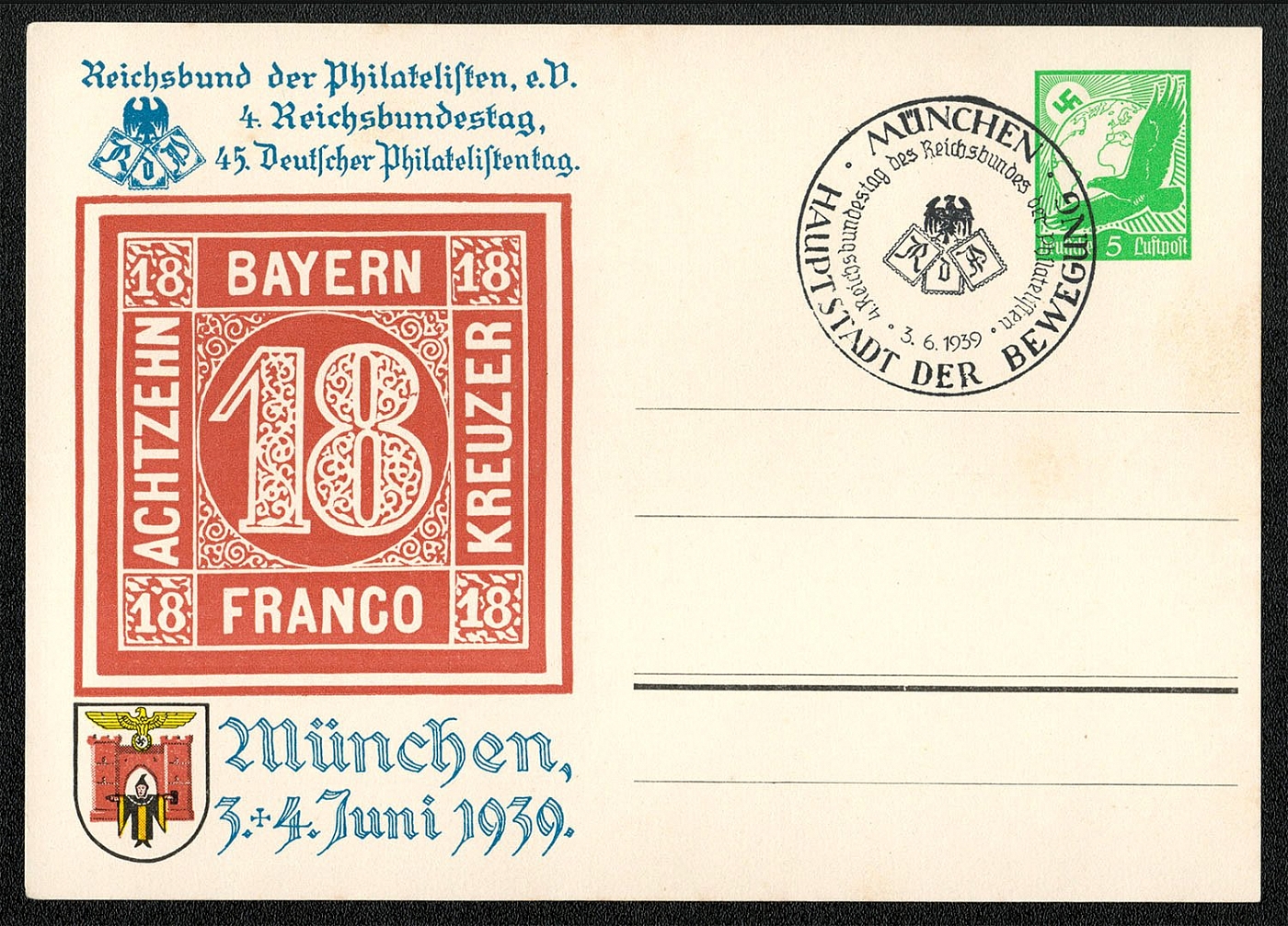
1939 Postcard issued for the forty-fifth German Philatelist Day in Munich franked 5 Rpf air mail stamp
"Reich Alliance of Philatelists 4""‘ Reich Alliance Day, 45""' German Philatelist Day Miinchen 3 and 4 June 1939 One of two special Privat-Postkarten issued for the forty-fifth German Philatelist Day in Munchen. The card above with the Gefalligkeitsstempel (favor cancellation) on the 5 Rpf air mail stamp is Michel PP 142. The cachet depicts the 18 Kreuzer value Bayern (Bavaria) issued in 1862 when it was an independent kingdom. (Bayern lost its postal autonomy in 1920.) The card exhibits one of two sonderstempelungen (special cancellations) in use for the two days of the exhibition. It represents the logo of the Reichsbund der Philatelisten."
Unsold
552
-
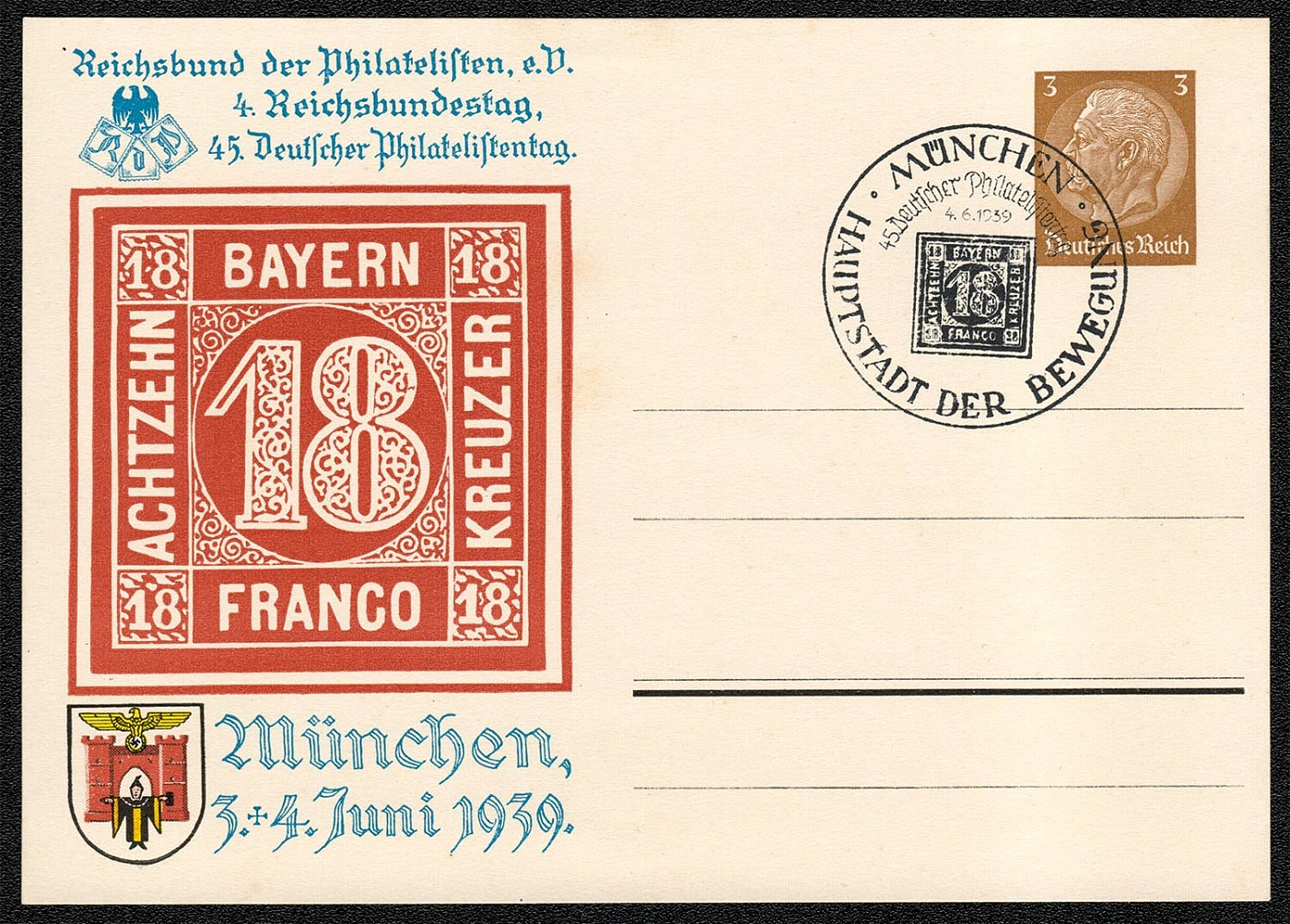
1939 Postcard issued for the forty-fifth German Philatelist Day in Munich Michel PP 122
"Reich Alliance of Philatelists 4""' Reich Alliance Day, 45""' German Philatelist Day Munchen 3 and 4 June 1939 Privat-Postkarte (Michel PP 122) issued for the forty-fifth German Philatelist Day in Munchen with gefalligkeitsstempel. The cachet and the sonderstempel depict the 18 Kreuzer value issued in 1862 by Bayern (Bavaria) when it was an independent kingdom."
Unsold
553
$5
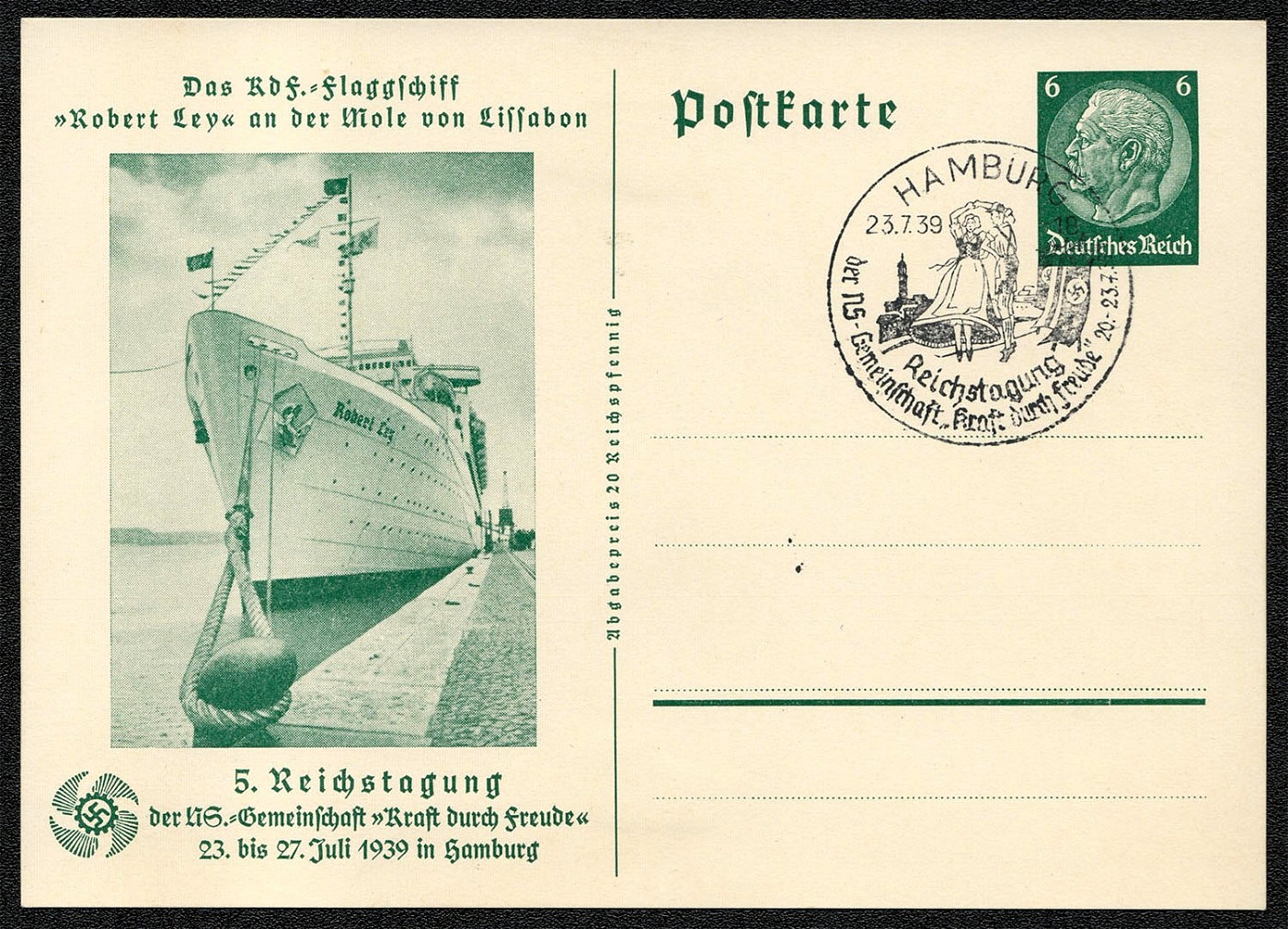
1939 Michel P240 National Socialist Community “Strength through Joy in Hamburg
"Michel P240 Special postal card with commemorative cancellation for the 5""' National Socialist Community “Strength through Joy” in Hamburg. Depicted is the K.d.F Flagship “Robert Ley” at the pier in Lisbon. The postal card cachet states the Conference would be held from the 23rd through the 27""' of July 1939, but the cancellation indicates it was to be held from the 2ffh through the 23rd. Postmarked 23 July 1939. Although the card was imprinted with a 6 Rpf stamp, the total cost was 20 Rpf."
Sold for:
$5
554
$16
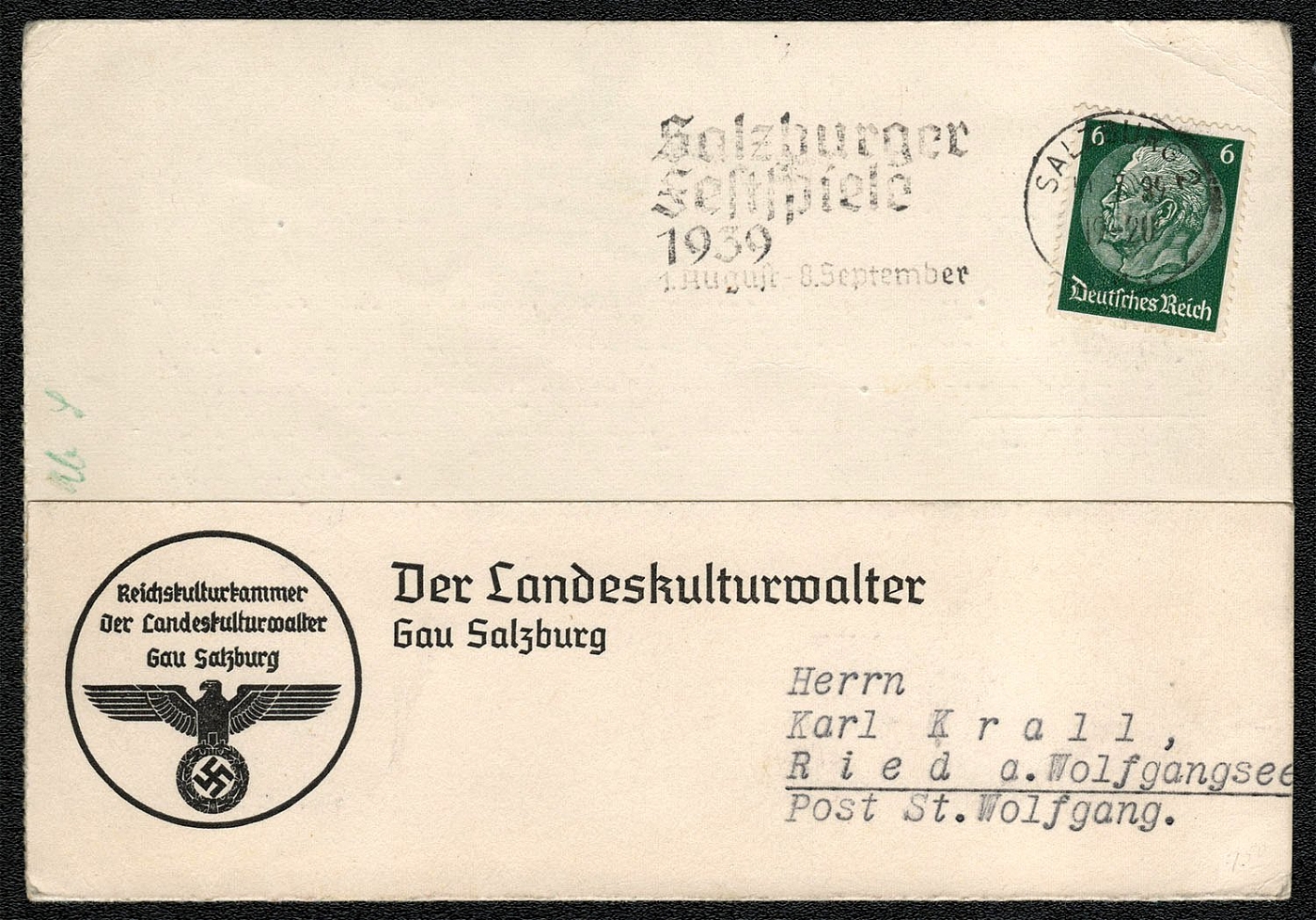
1939 Official card franked with Sc. 403 posted on 16 July 1939 by the administrator of the Gau Salzburg Regional Culture Authority of the Reichskulturkammer
"Official card franked with Sc. 403 posted on 16 July 1939 by the administrator of the Gau Salzburg Regional Culture Authority of the Reichskulturkammer. The slogan cancellation promotes the 1939 Salzburg Festival, 1 August through 8 September. The message on the reverse advises the recipient of the upcoming conducted tour of the R.d.b.K. (?) in Munchen. * In February 1934, the Reichskulturkammer (Reichs Chamber of Culture) became a corporate member of the D.A.F. Its responsibility was to organize, supervise (and censor) the entire cultural life of the nation. Membership in one of the seven individual chambers was the prerequisite for any cultural activity in the Third Reich. § (With the Worker) The tear sheet on the right is taken from one of the many low-cost albums distributed by cigarette companies and the like for pasting in propaganda photos. The upper photo shows Hitler with the workers in Siemensstadt. the lower shows Hitler with Youth Workers in the Reichskanzlei on Germany’s Labor Day, 1 May 1934. In his book Adolf Hitler, author John Toland reports the following: Working conditions were improved with more windows, less crowding and better washrooms. Under the slogan “Beautification in Every Place,"" all offices and workrooms were kept clean and neat. there were abundant flowers so that those who labored could also enjoy their surroundings. Such gains were not illusory. Never before had the worker enjoyed such privileges."
Sold for:
$16
555
$5
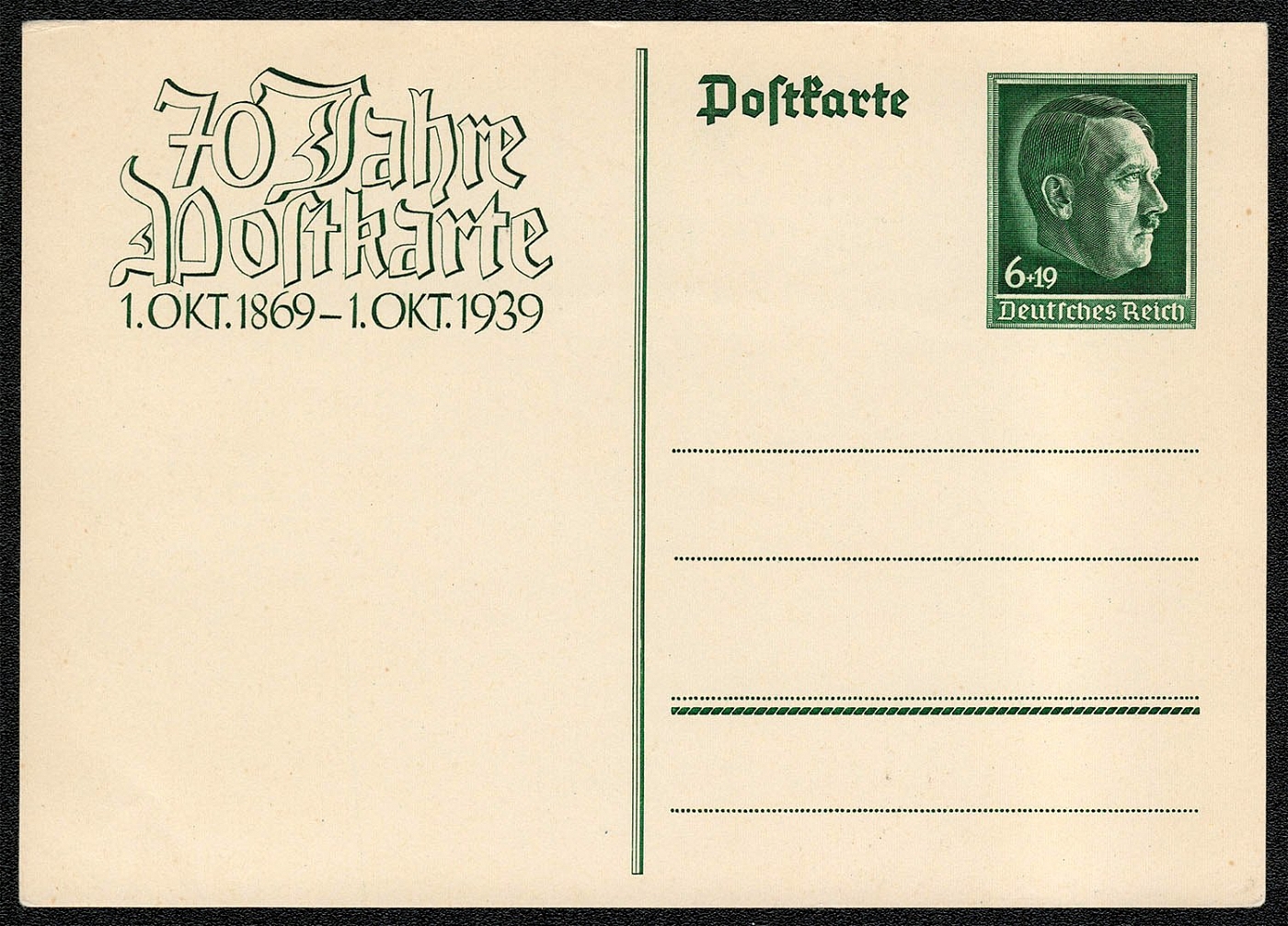
1939 Austria issued the first postal card with an imprinted stamp
Austria issued the first postal card with an imprinted stamp on 1 October 1869. To commemorate its 70th anniversary, the above card was prepared for a planned exhibition to be held in Berlin. The exhibition, however, was cancelled because of war preparations. Consequently, the card was never formally issued, but a quantity was stolen from the State Printing Works in Wien after World War II by looters, and specimens thus came into the hands of collectors. The card was valued at 70 marks ($42) in the 1997 edition of the Michel Ganzsachen-Katalog Deutschland. This one was purchased via an Internet auction from a private individual for $3.75 in 1999.
Sold for:
$5
556
$9
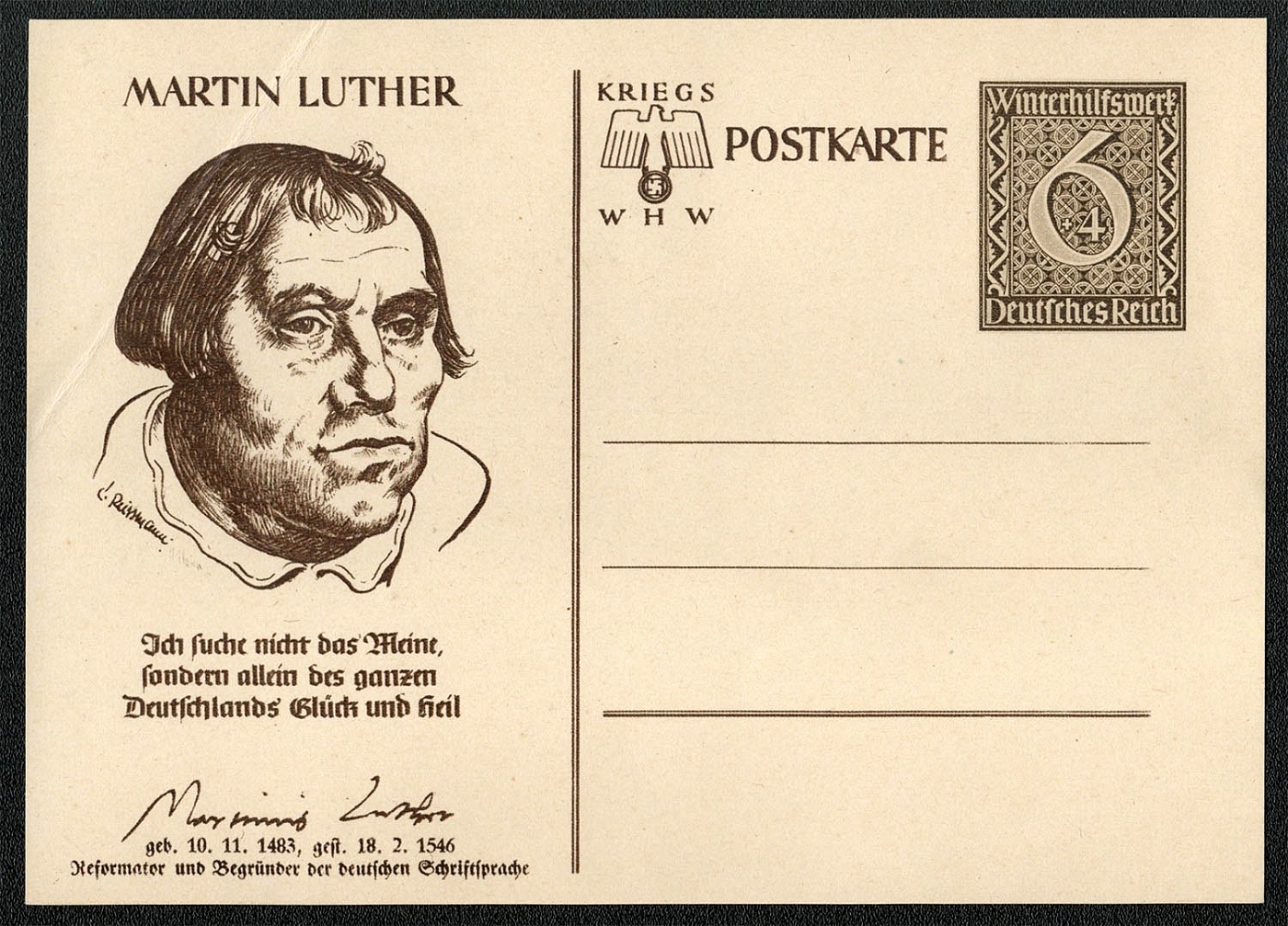
1939 Special card for the 1939 Winter Aid Michel P 285-02
Michel P 285-02 Imprinted stamp designed by Hann Trier of Koln. Issued 27 October 1939. valid until 30 June 1940. The inscription translates: I seek nothing for myself, but for all Germany’s success and prosperity. Born 10 November 1483, died 29 August 1523. Reformer and founder of the German standard language.
Sold for:
$9
557
$5
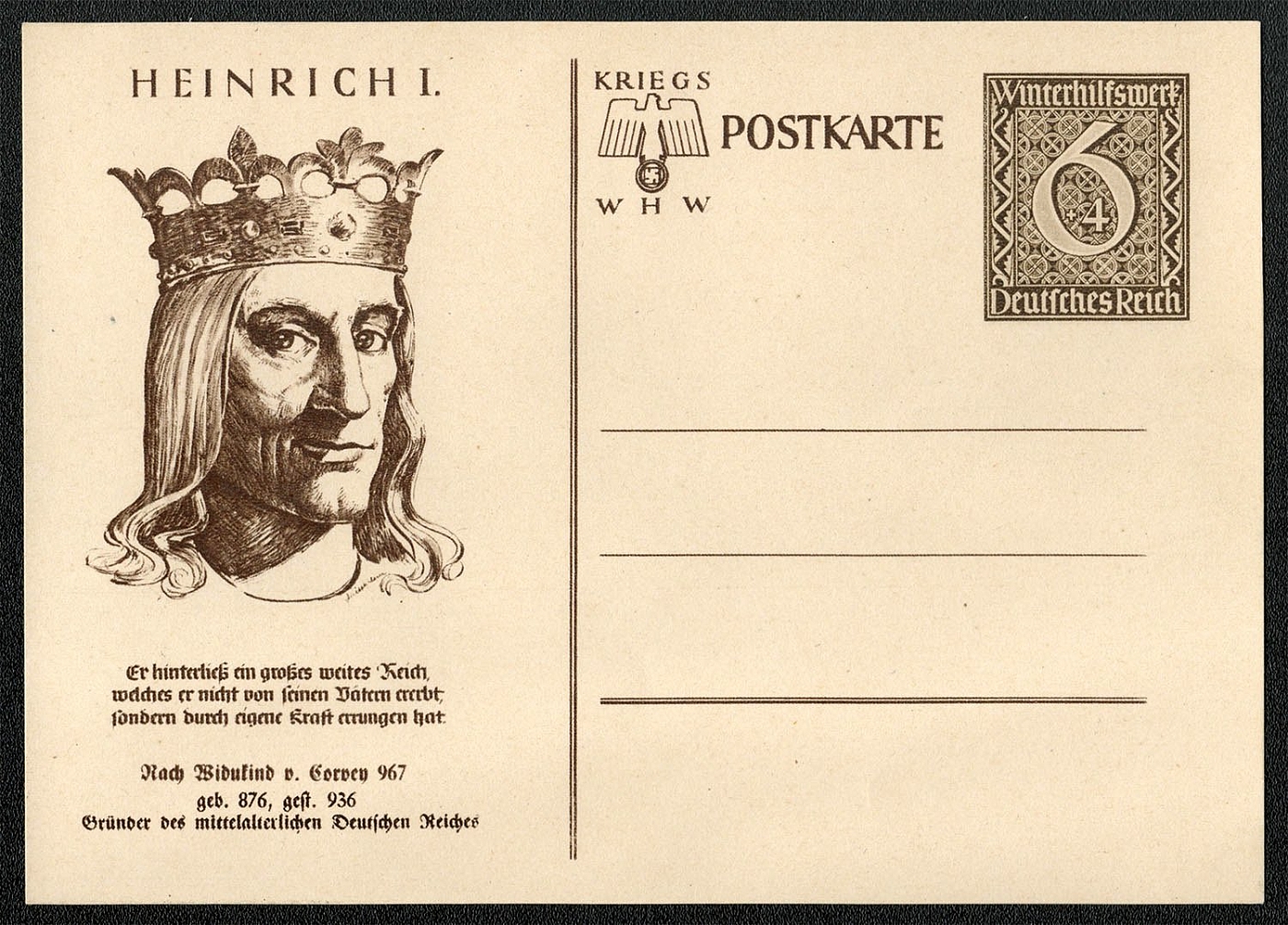
1939 Special card for the 1939 Winter Aid Michel P 285-01
Michel P 285-01 Imprinted stamp designed by Hann Trier of Kohi. Issued 27 October 1939. valid until 30 June 1940. The inscription translates: He left after him a great kingdom which he did not inherit from his father, but acquired through his own strength. After Widukind v. Corven, 967. Born 876, died 967. Founder of the medieval German Empire.
Sold for:
$5
558
-
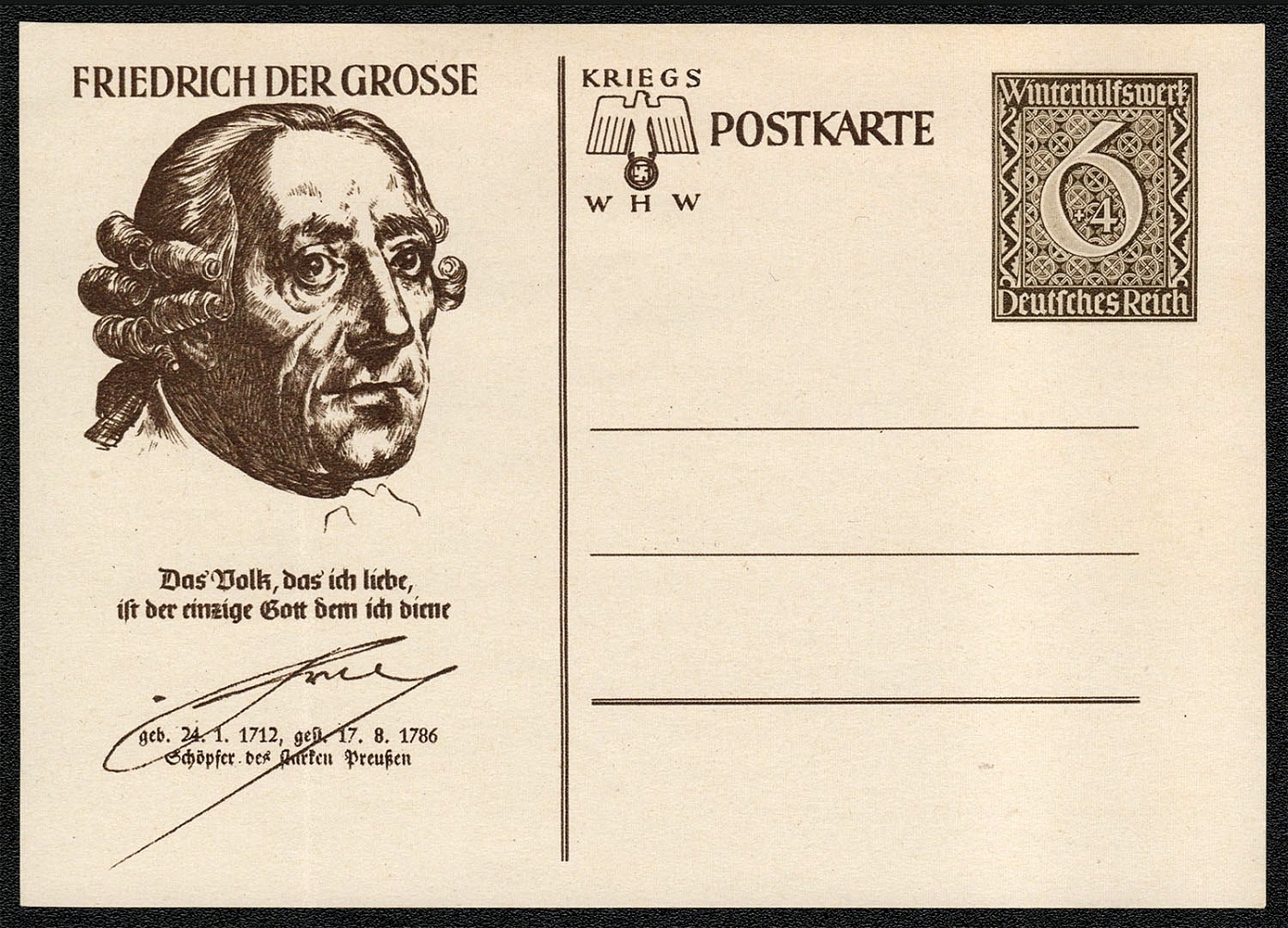
1939 Special card for the 1939 Winter Aid Michel P 285-04
Michel P 285-04 Imprinted stamp designed by Hann Trier of Koln. Issued 27 October - 9 November 1939. valid until 30 June 1940. The inscription translates: The people that I love are the only god I serve. Born 24 January 1712, died 17 August 1786. Creator of a strong Prussia.
Unsold
559
$5
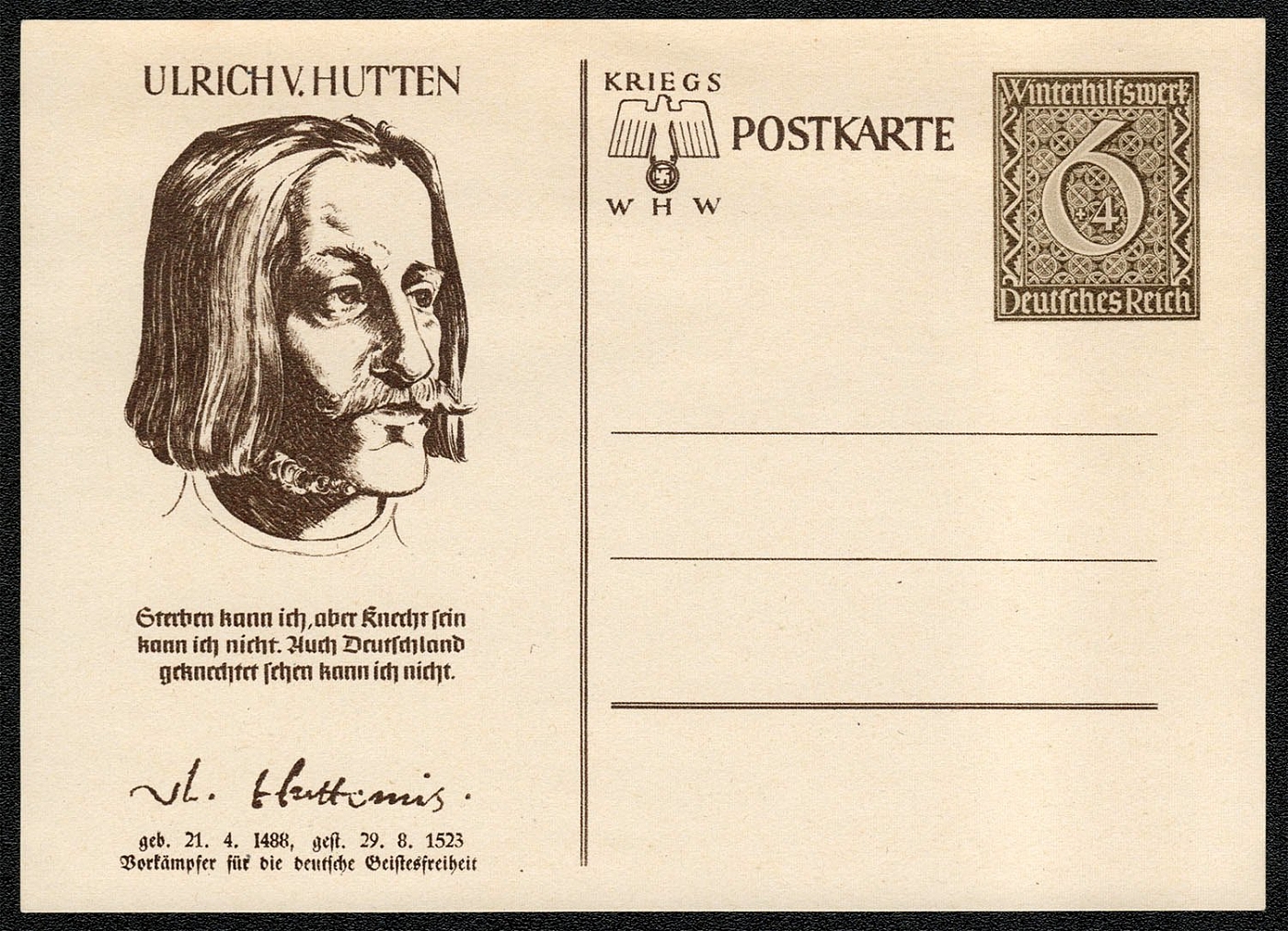
1939 Special card for the 1939 Winter Aid Michel P 285-03
Michel P 285-03 Imprinted stamp designed by Hann Trier of Koln. Issued 27 October 1939. valid until 30 June 1940. The inscription translates: can die, but I can not be a slave. Also, I can not tolerate Germany’s enslavement. Born 21 April 1488, died 29 August 1523. Champion of German intellectual freedom.
Sold for:
$5
560
$9
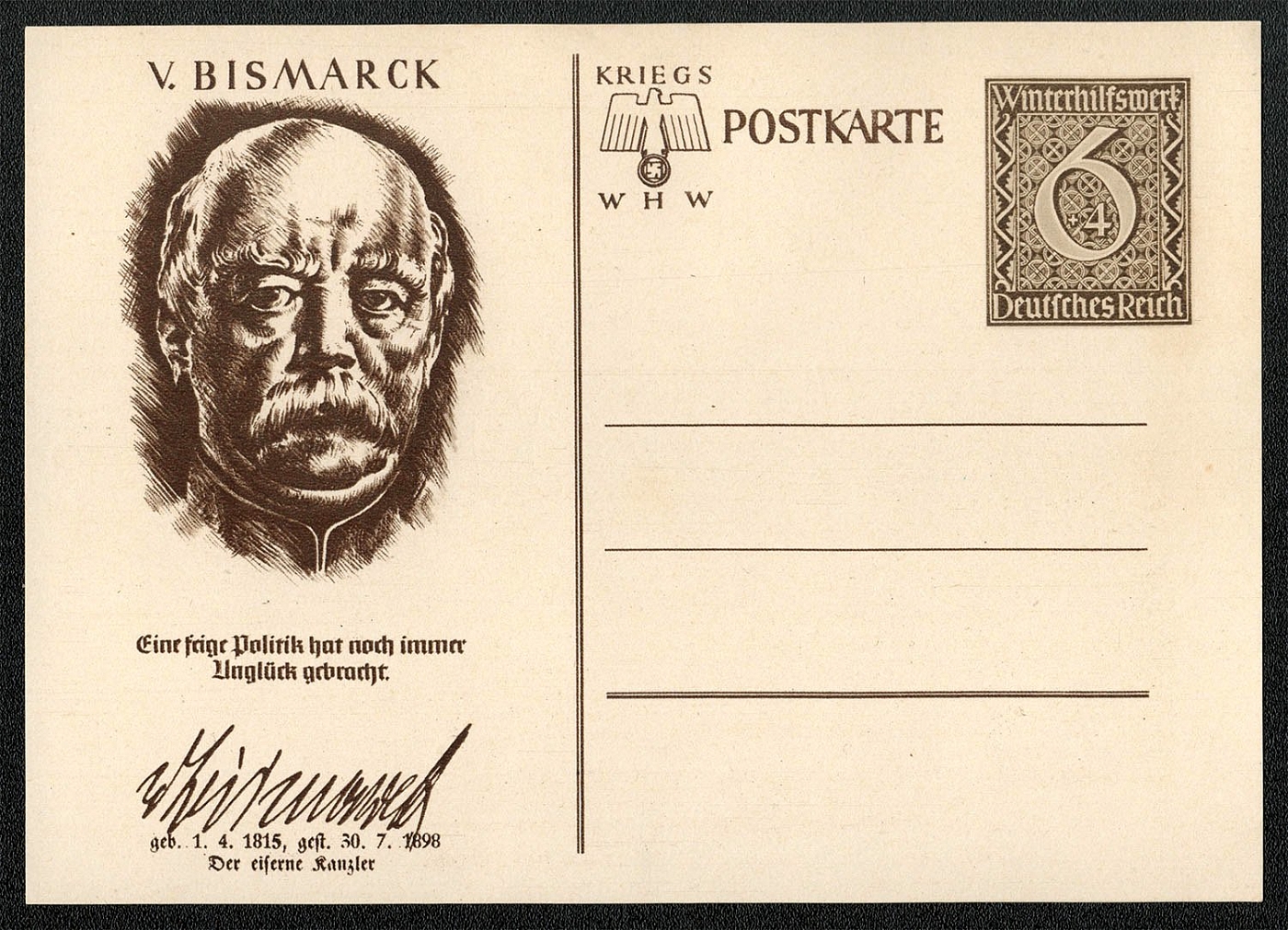
1939 Special card for the 1939 Winter Aid Michel P 285-05
Michel P 285-05 Imprinted stamp designed by Hann Trier of Koln. Issued 27 October 1939. valid until 30 June 1940. The inscription translates: A cowardly politic has always brought misfortune. Born 1 April 1815, died 30 July 1898. The first Chancellor.
Sold for:
$9
561
-
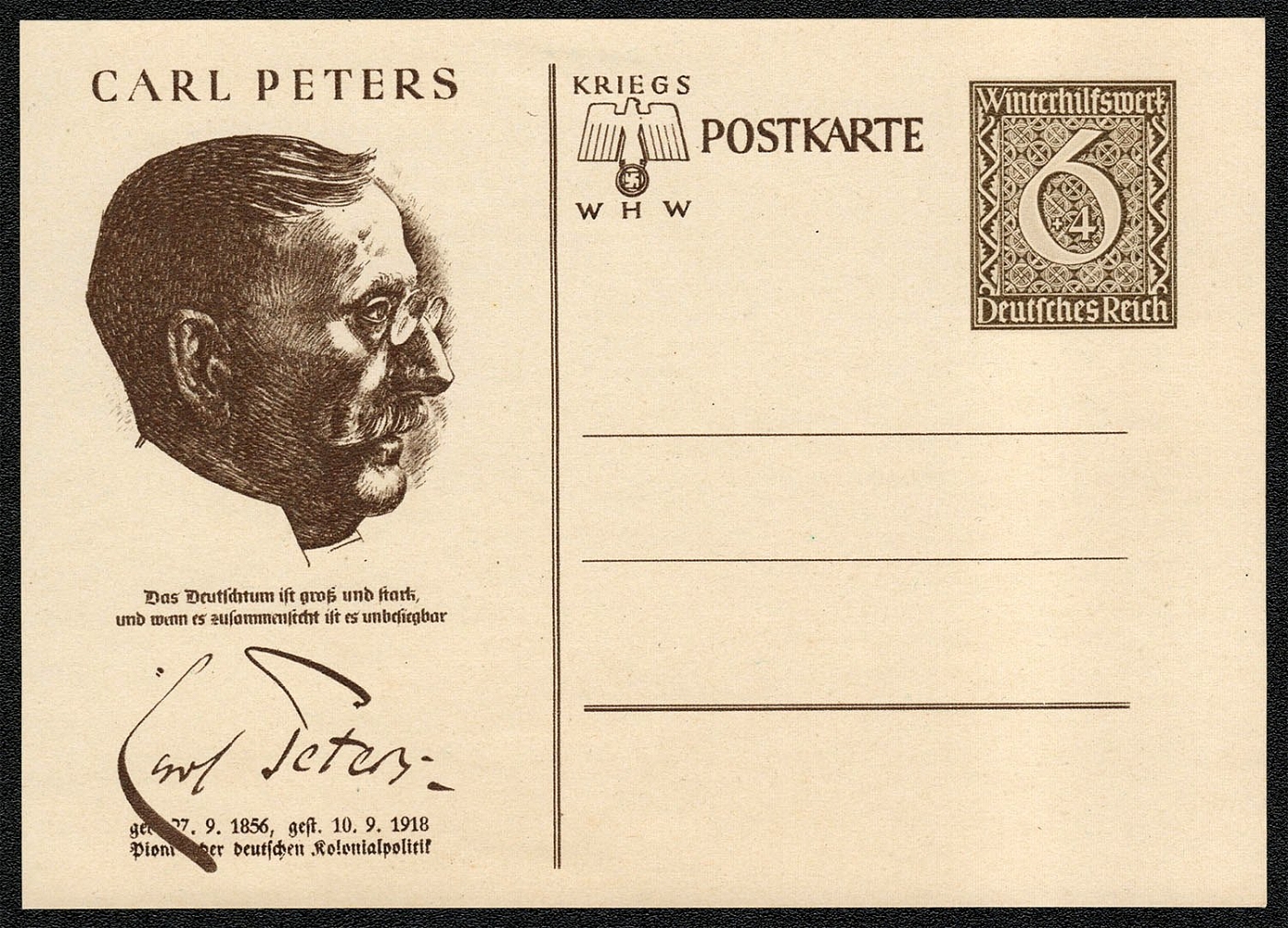
1939 Special card for the 1939 Winter Aid Michel P 285-06
Michel P 285-06 Imprinted stamp designed by Hann Trier of Koln. Issued 27 October 1939. valid until 30 June 1940. The inscription translates: Germany is great and strong. when it stays together it is unconquerable. Born 27 September 1856, died 10 September 1918. Pioneer of the German Colonial Politic.
Unsold
562
-
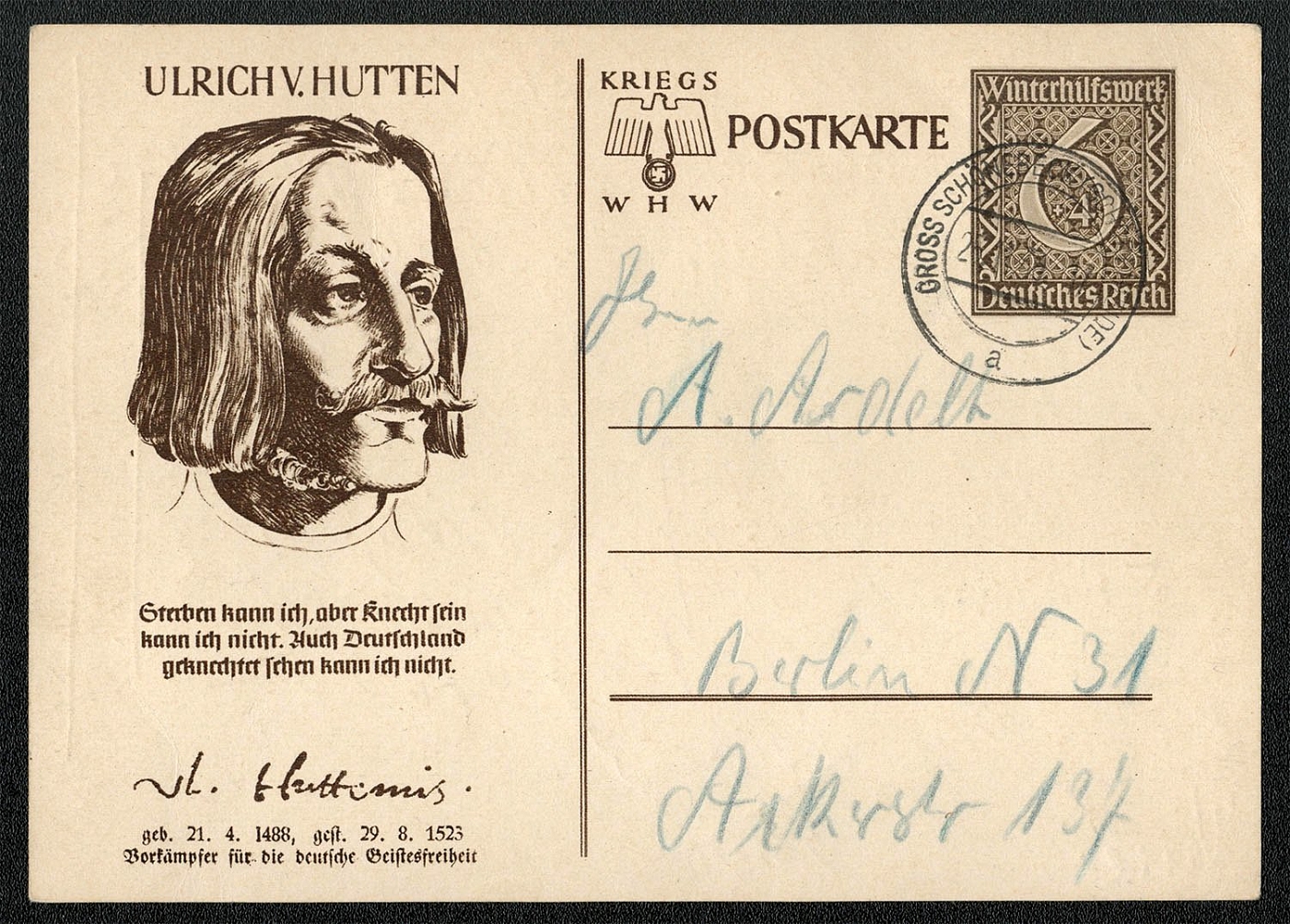
1939 Special card for the 1939 Winter Aid Michel P 285-03 Used
Michel P 285-03 Posted 1939-40 in Gross-Schonebeck, a town north of Berlin. The pictorial cancellation translates: Personal caution is your best defense against accident. It was in use from 24 November 1937 through 1954. The card is addressed to Odrau, Ostsudetenland, possibly a town on the Odra (Oder) River.
Unsold
564
-
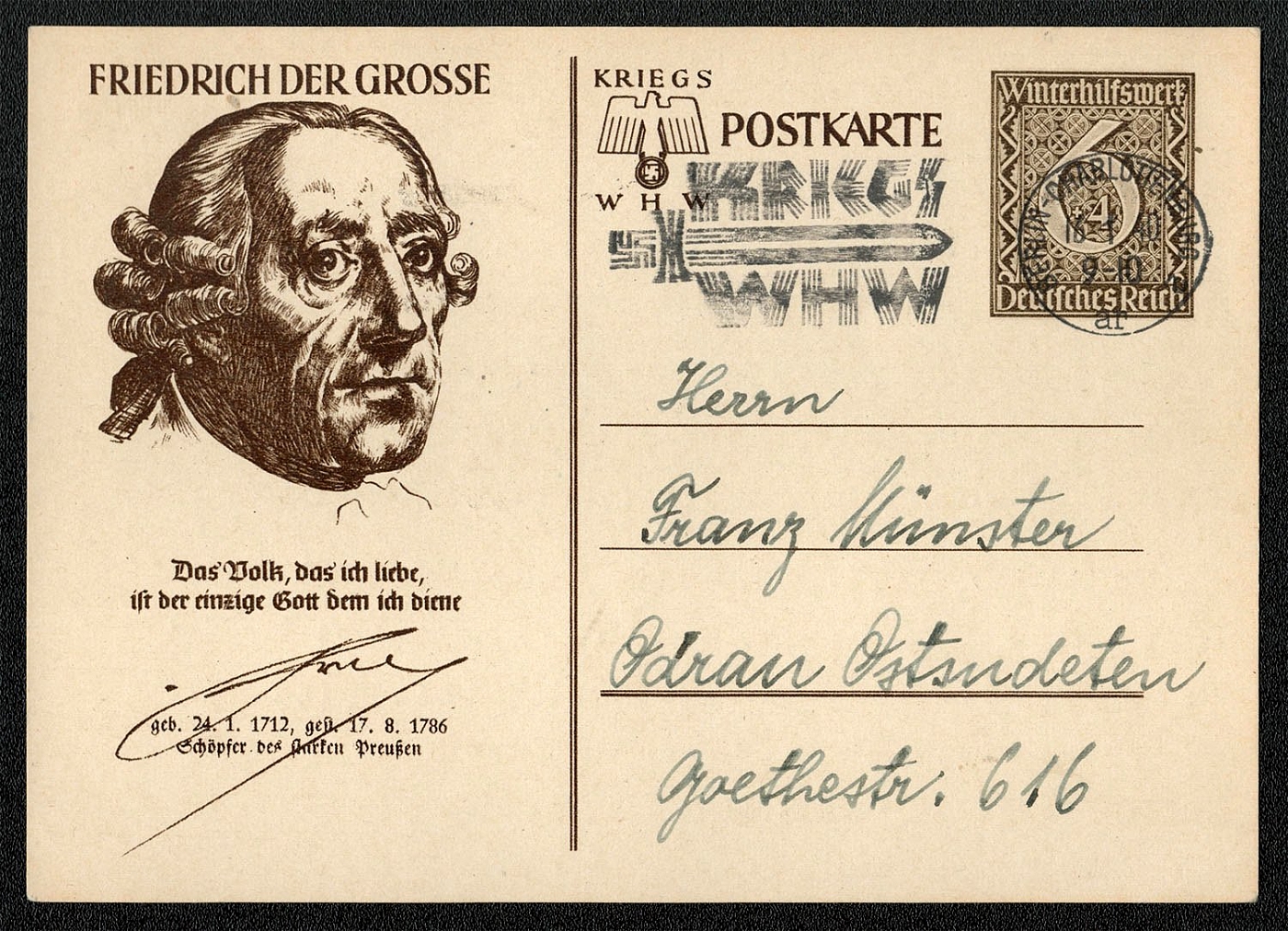
1940 Berlin-Charlottenburg Special card for the 1939 Winter Aid Michel P 285-04
(Michel P 285-04) Posted 16 January 1940 in Berlin-Charlottenburg. The Wartime Winter Aid Gelegenheitsstempel (special cancel) was in use in Berlin and eight other towns (Breslau, Fulda, Giessen, Glauchau, Innsbruck, Salzburg, Weissenfels and Wesennunde) from 9 January through 31 March 1940.
Unsold
565
-
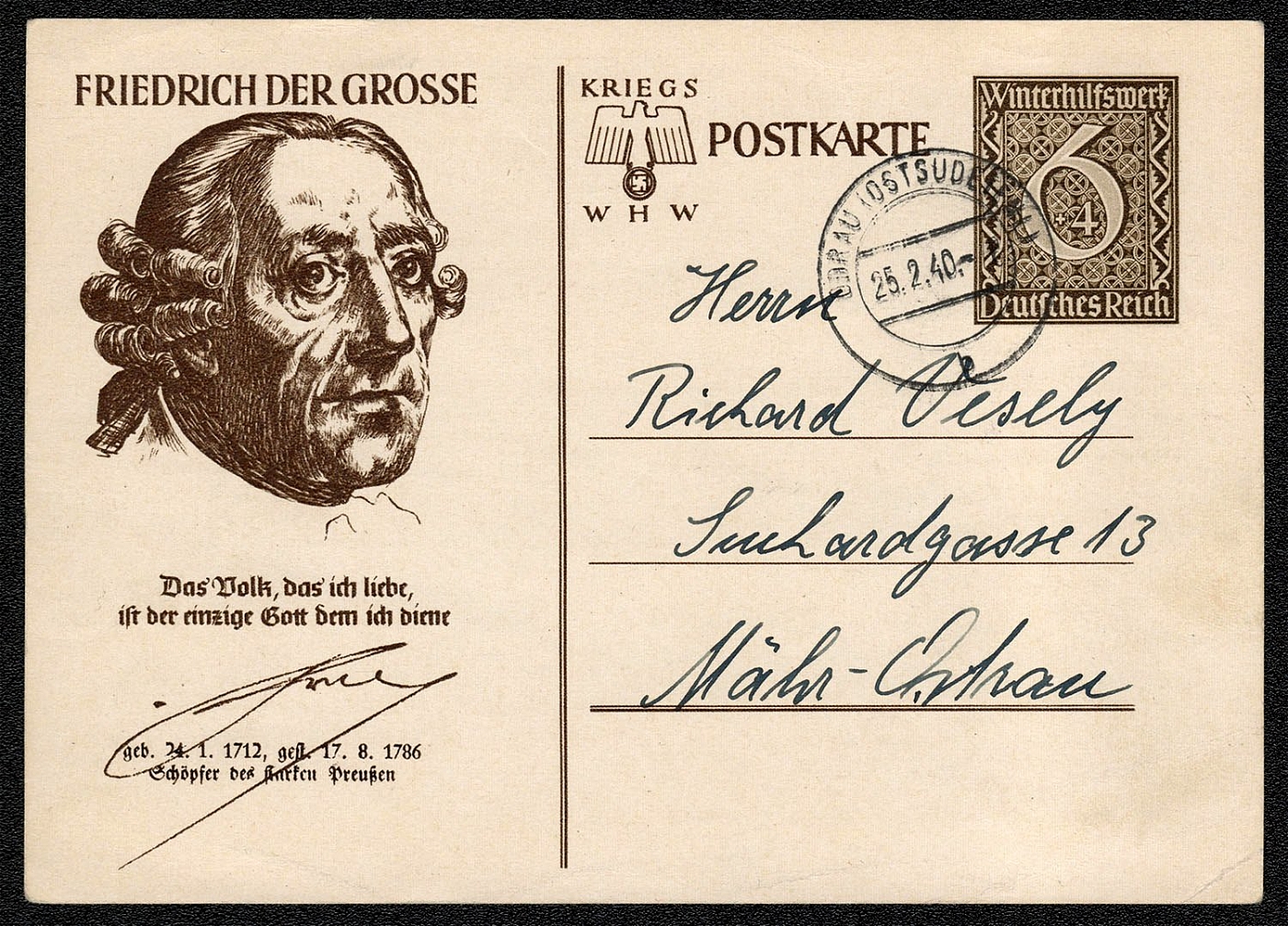
1940 Odrau Special card for the 1939 Winter Aid Michel P 285-04
(Michel P 285-04) Posted 20 February 1940 in Odrau (Ostsudetenland).
Unsold
566
-
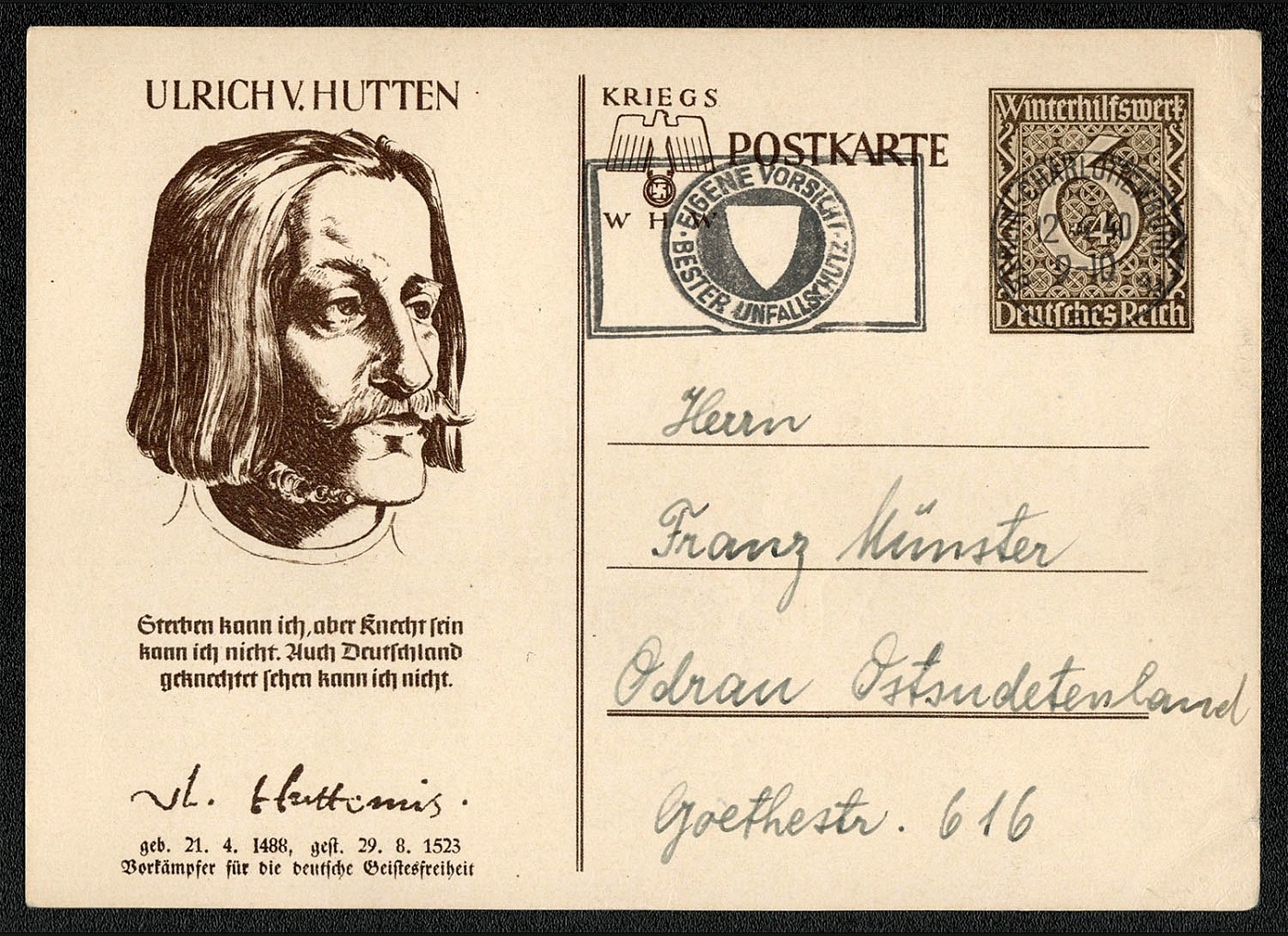
1940 Berlin-Charlottenburg Special card for the 1939 Winter Aid Michel P 285-03
(Michel P 285-03) Posted 11 April 1940 in Berlin-Charlottenburg. The pictorial cancellation translates: Personal caution is your best defense against accident. It was in use from 24 November 1937 through 1954. The card is addressed to Odrau, Ostsudetenland, possibly a town on the Odra (Oder) River.
Unsold
567
$5
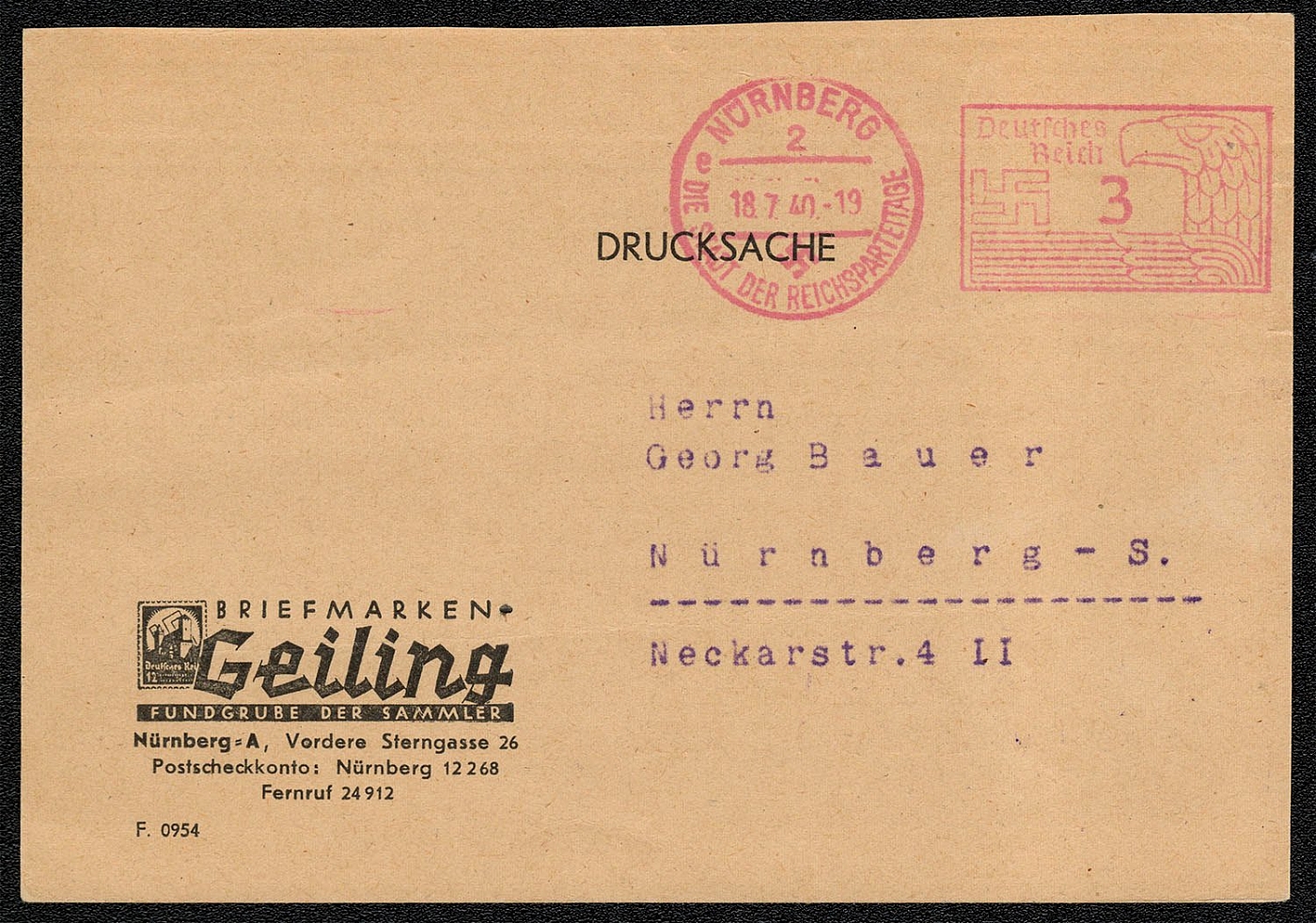
1940 Advertising card franked with a 3 Rpf postage meter stamp paying the rate for printed matter
Advertising card franked with a 3 Rpf postage meter stamp paying the rate for printed matter. Mailed on 18 July 1940 from POSTAGE STAMPS I A GOLD MINE FOR COLLECTORS I Nurnberg-A Note Herr Ceiling’s logo includes an impression of Sc 443.
Sold for:
$5
568
$5
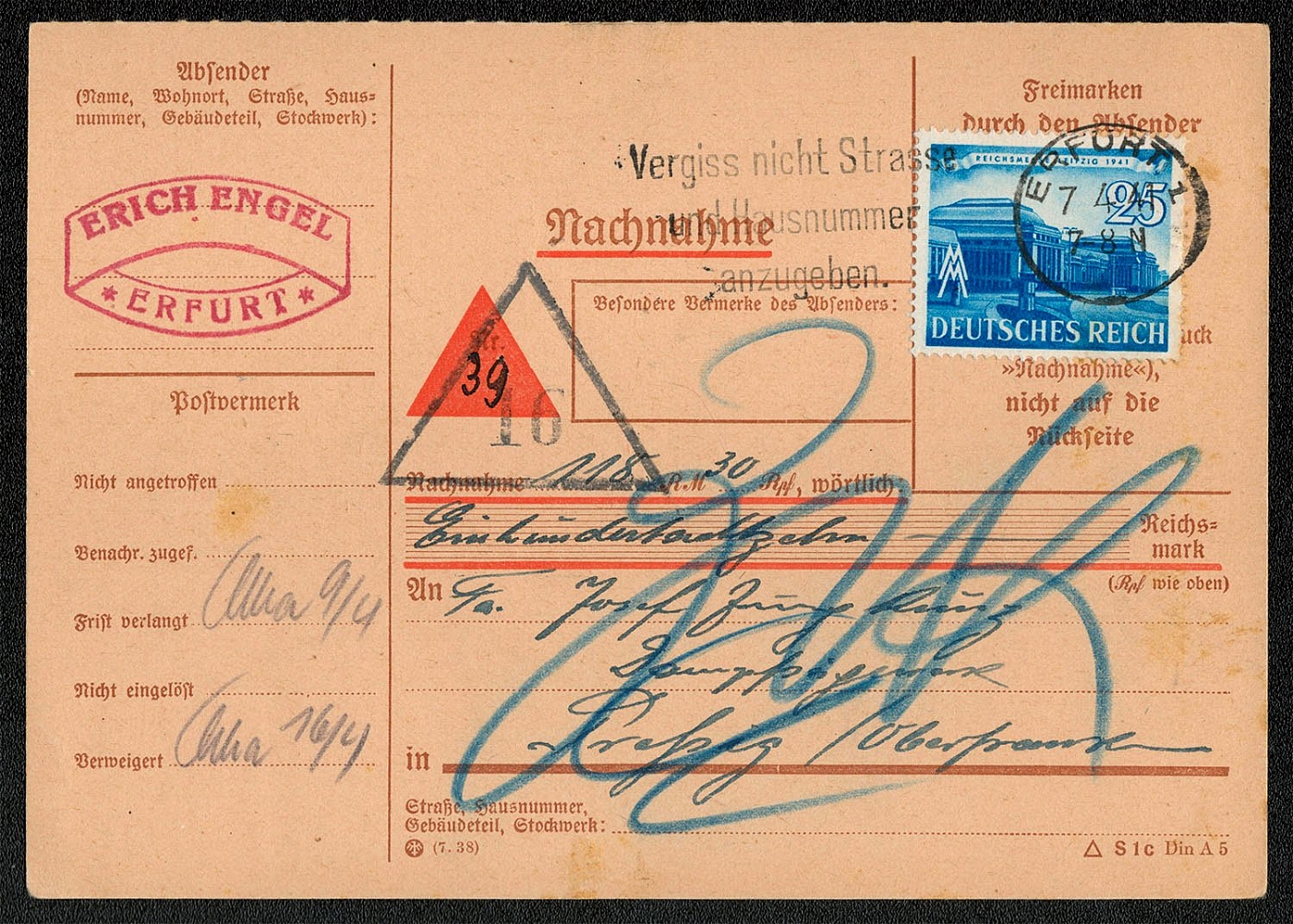
1941 Reply card (half) originally intended to be mailed at no cost to the sender, i.e., the recipient would pay the postal fees
Reply card (half) originally intended to be mailed at no cost to the sender, i.e., the recipient would pay the postal fees. However, it is franked with Sc 501. Posted in Erfurt on 7 April 1941.
Sold for:
$5
569
$5
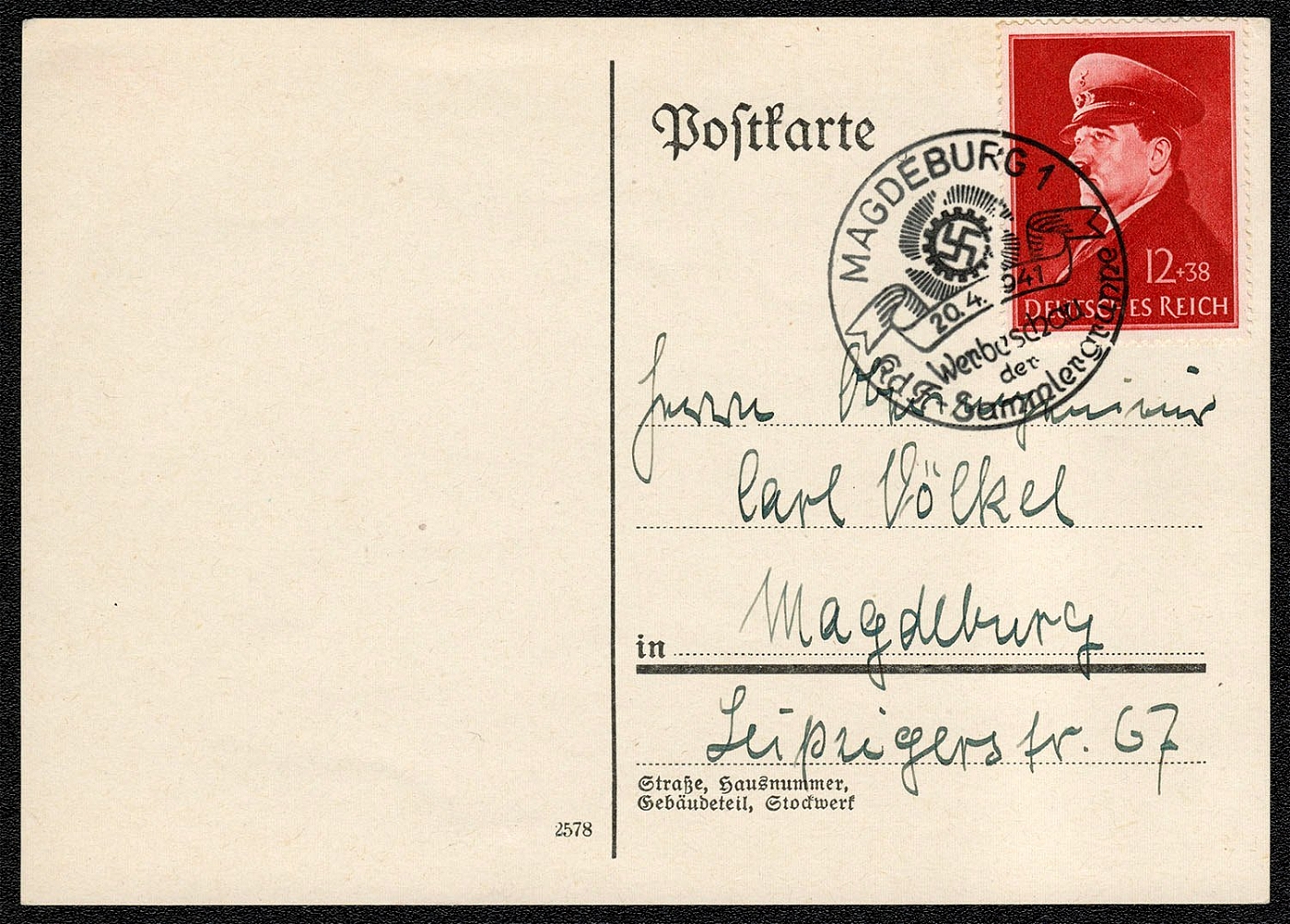
1941 Hitler's 52nd Birthday used card with publicity cancellation dated 20 April
Philatelically prepared, but postally used card with publicity cancellation dated 20 April 1941. Sponsored by the KdF Stamp Collectors Club of Magdeburg where the special postmark was used.
Sold for:
$5
570
$5
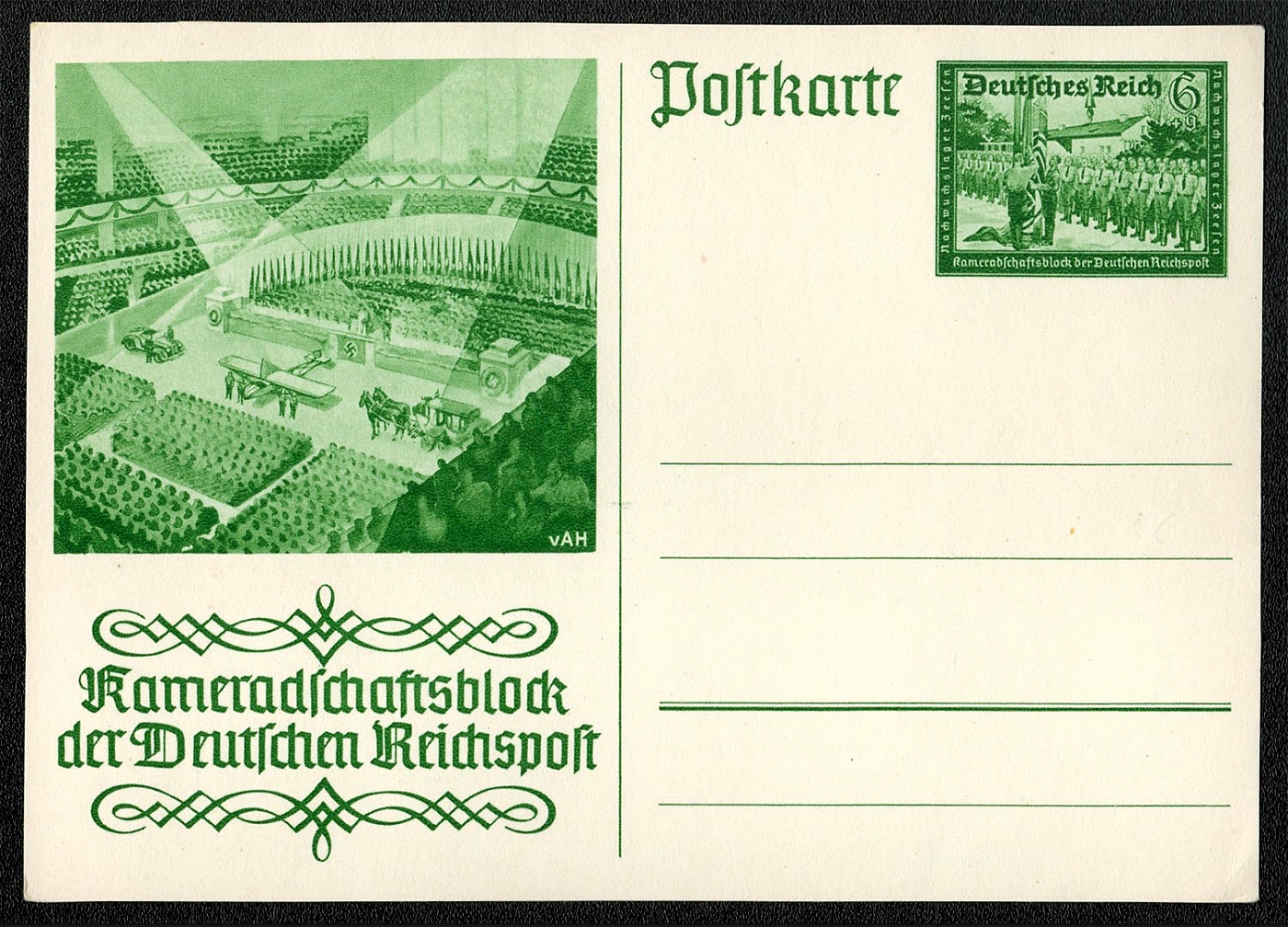
1941 Special Postcard for the Fellowship Block of the German Reichspost
Celebration in Deutschland Hall in Berlin Michel P 292, issued 19 May 1941. Designed by von Axster-Heudtlass, who also designed the stamp: (Zeesen Training Camp).
Sold for:
$5
571
$25
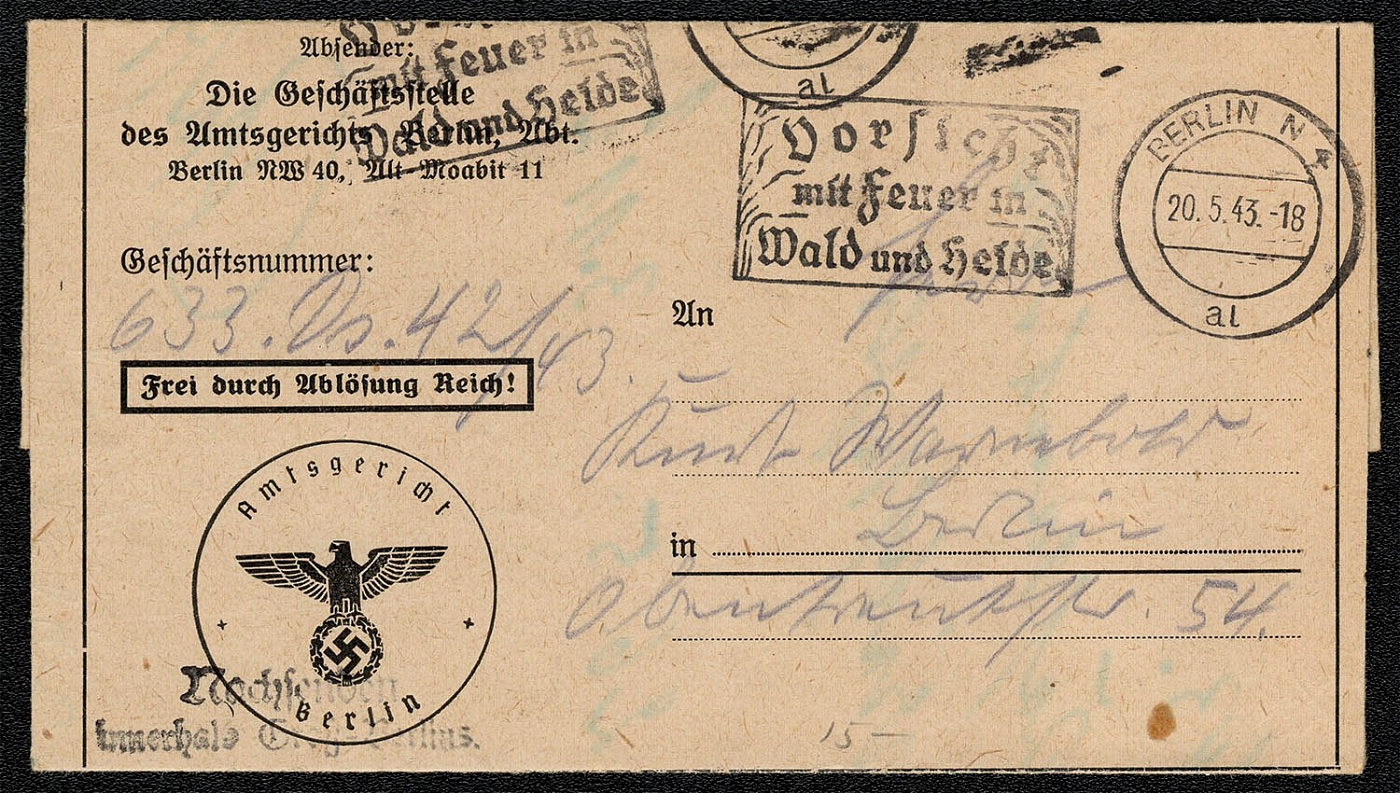
1943 Postally transmitted summons for a criminal case to be heard in the District Court of Berlin
Postally transmitted summons for a criminal case to be heard in the District Court of Berlin (Amtsgericht - Berlin) at 11:30, the morning of 26 May 1943. Posted in Berlin N. 20 May 1943. The cancellation slogan “Use Caution with Fire in Forest and Moor.” Free Throughout the Reich, and is comparable to “On Her Majesty’s Service,” as used in England, or more simply For Official Use Only as used in the United States.
Sold for:
$25
572
$5
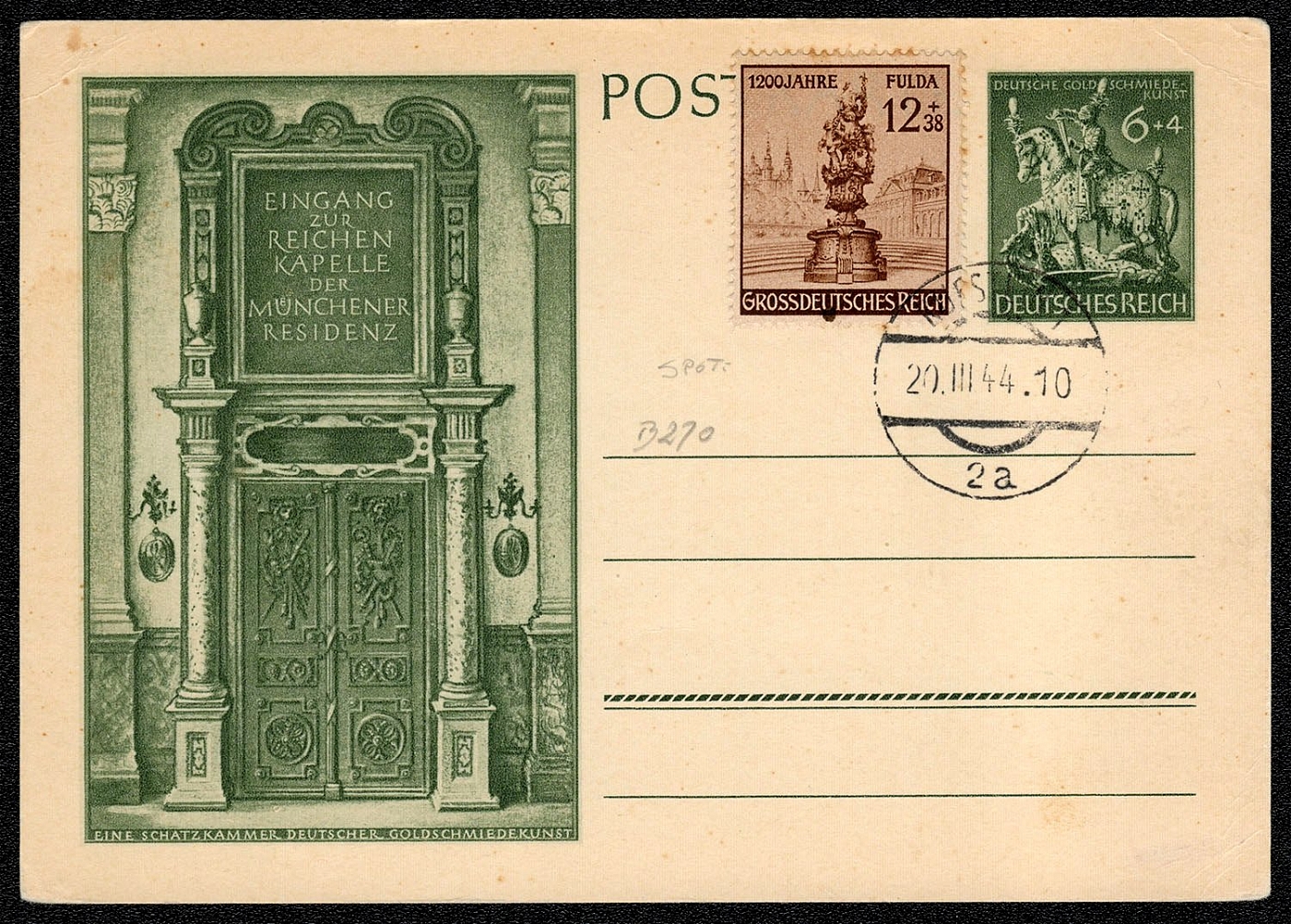
1944 Michel P 296 additionally franked with Michel 886 (Scott B270) spot on the “U” of GROSSDEUTSCHES
Michel P 296 additionally franked with Michel 886 (Scott B270) cancelled to order on 20 March 1944. The town name in the double circle date stamp, unfortunately, cannot be determined. Philatelic interest does not stop there, however. The Michel Deutschland-Spezial-Katalog 2000 catalog identifies three different “spot” varieties on this issue. On this copy there is a very distinct brown ink spot on the “U” of GROSSDEUTSCHES, but this variety is not listed in the catalog. A previous owner of the card also saw the spot, and noted so in pencil. The Michel-recognized spot varieties enhance the value of the stamp one hundred-fold!
Sold for:
$5
573
-
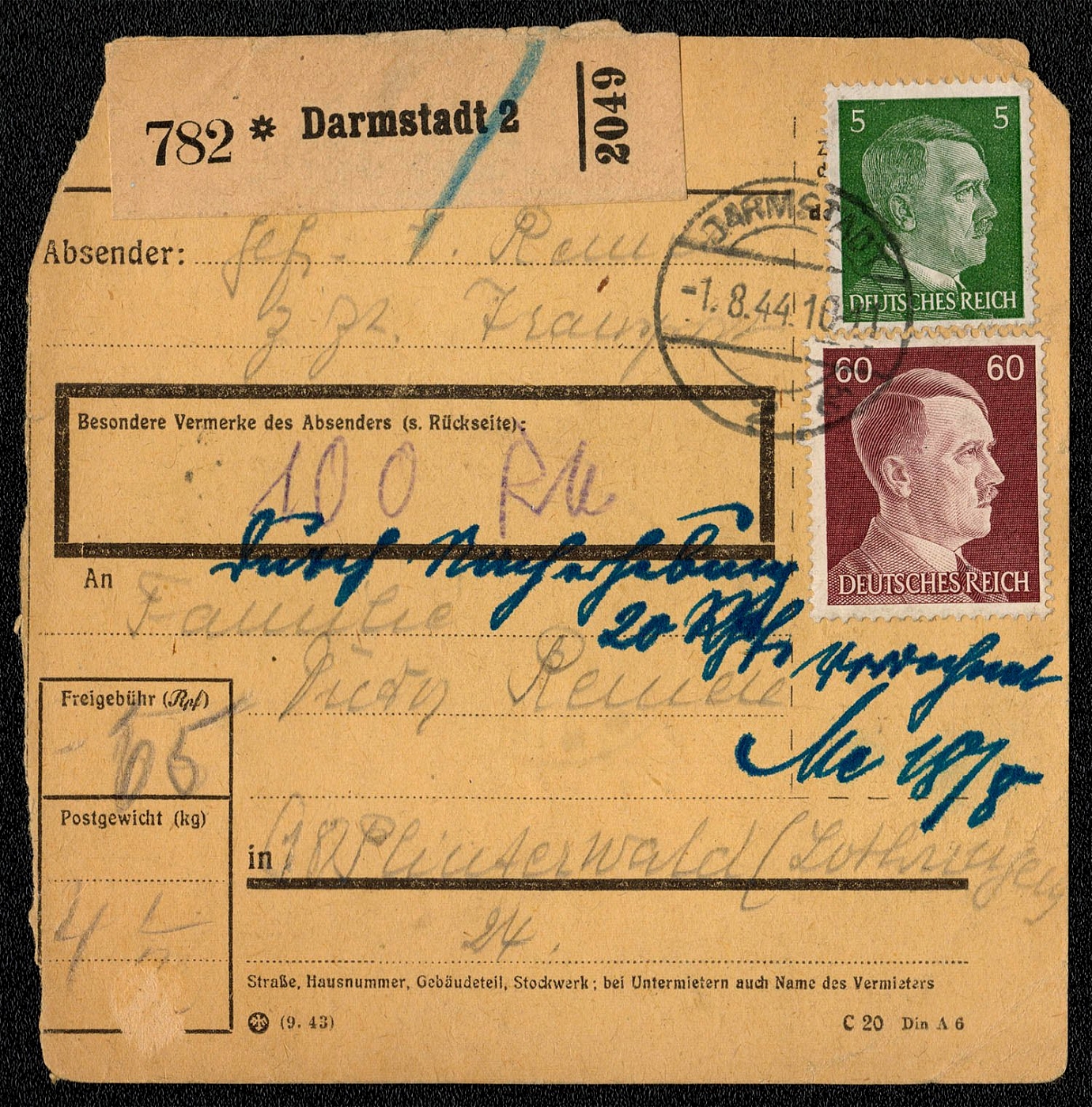
1944 Postal receipt franked with Sc 509 and 522 for package sent from Darmstadt
Postal receipt franked with Sc 509 and 522 for package sent from Darmstadt 2 on 1 August 1944. The package was received in Dreibrunnen (Westmar) on 8 August 1944.
Unsold
574
$5
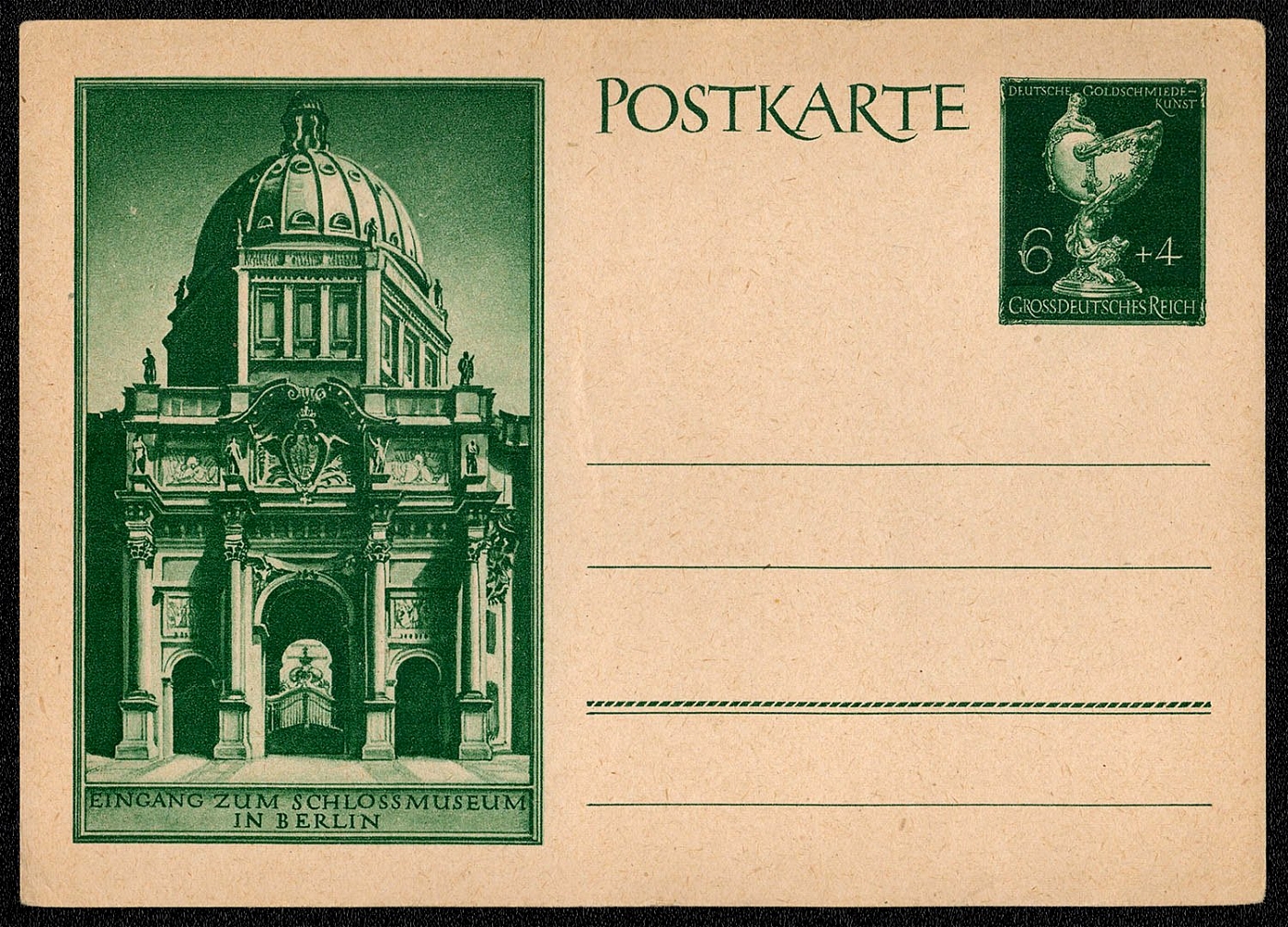
1944 Michel P 297, printed on little more than thick rough paper, is the last postal stationery of the Third Reich
Michel P 297, printed on little more than thick rough paper, is the last postal stationery of the Third Reich. The illustration depicts the entrance to the Schloss Museum (Palace Museum) in Berlin that was founded in 1867 and houses industrial art.
Sold for:
$5
575
$5
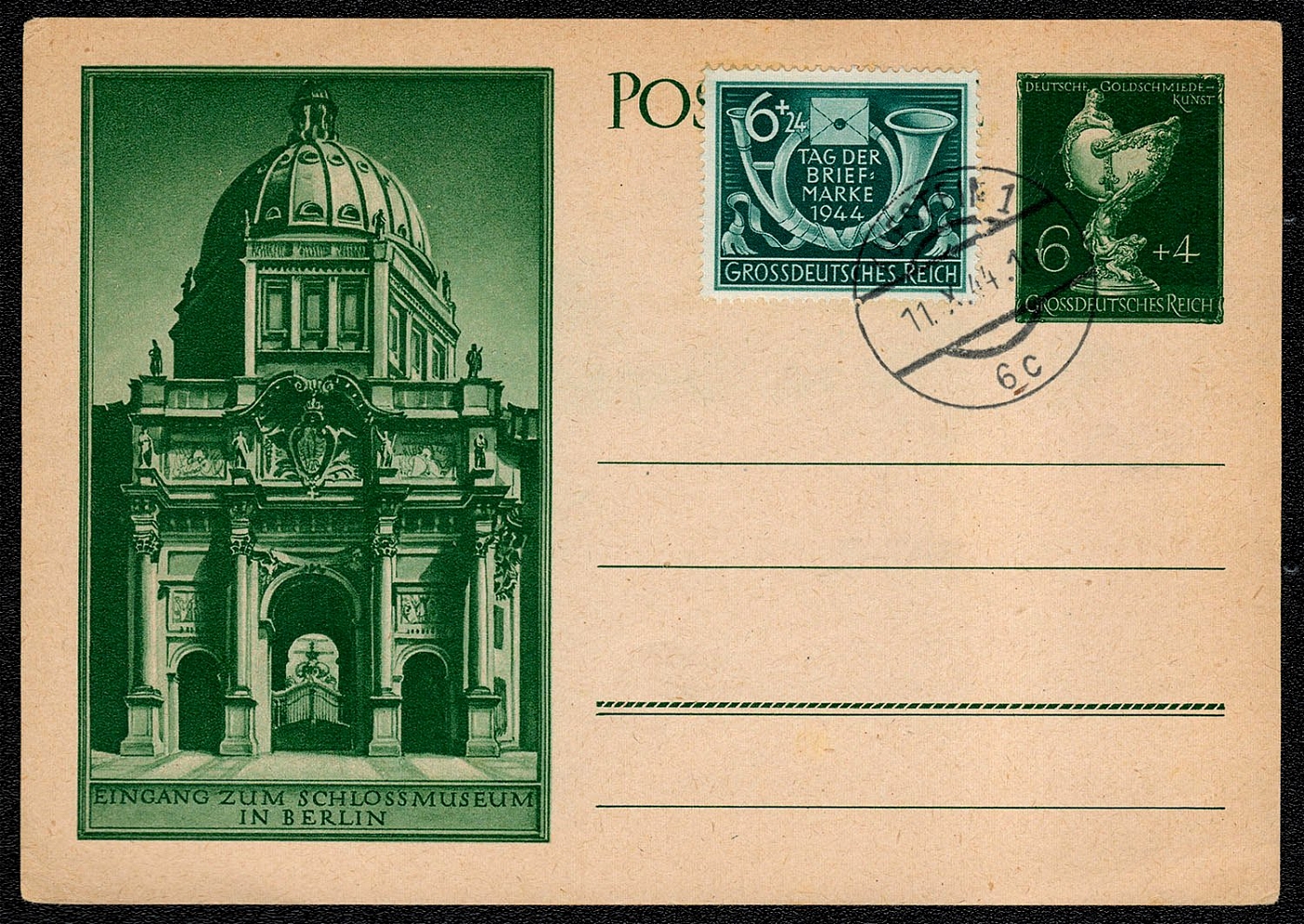
1944 Michel P 297 additionally franked with Sc B288. The is the last Day of the Stamp issue of the Third Reich
Michel P 297 additionally franked with Sc B288. This postal stationery received a favor cancel dated 11 October 1944 in Postamt Kufstein 1. (Kufstein is in western Austria.)
Sold for:
$5
576
$5
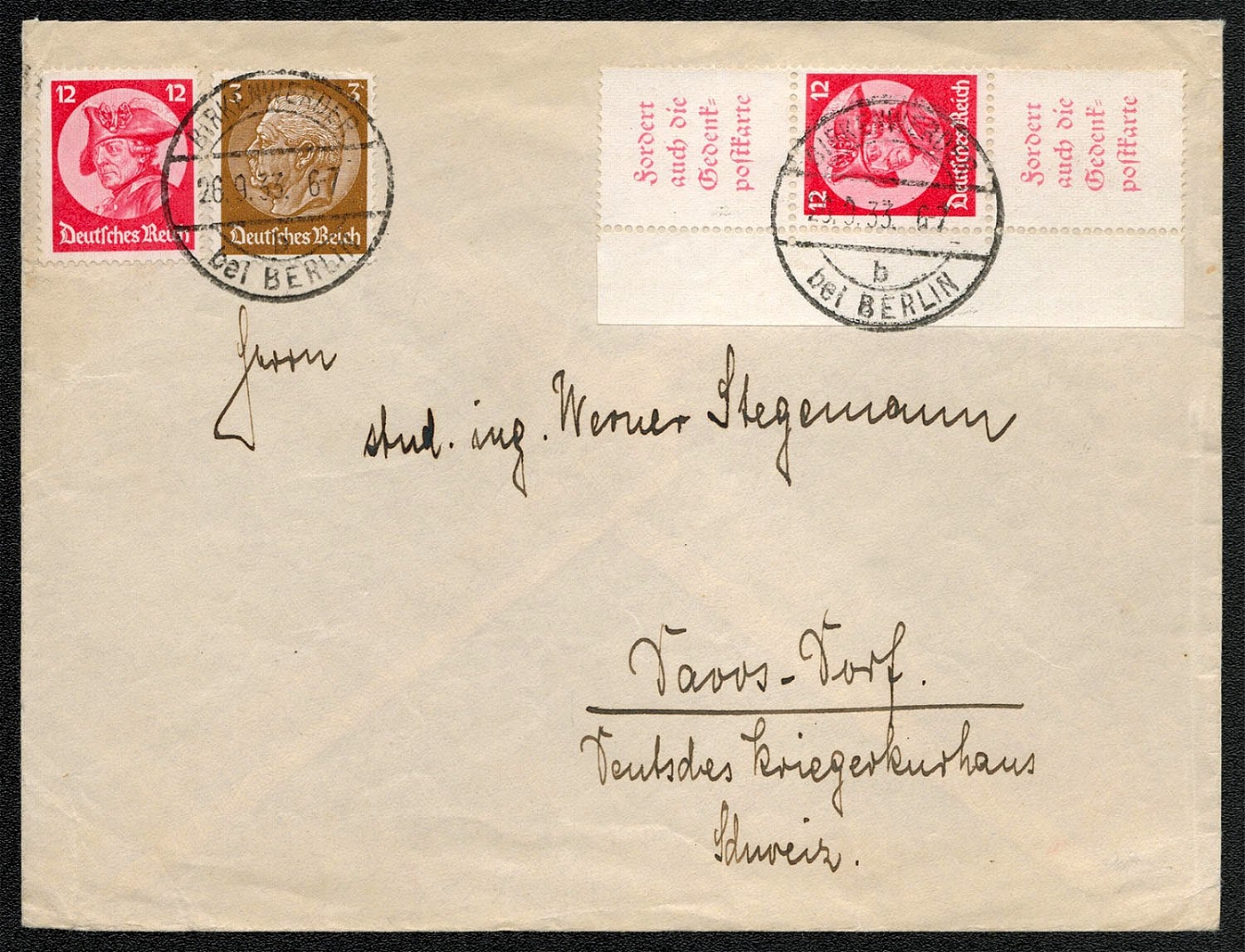
1933 Commemorative Issues for the Opening Session of the New Reichstag. Scott No. 401 and 399 with booklet pane labels
Scott Nos. 401 and 399 with booklet pane labels on cover posted in Birkenwerder bei Berlin on 26 September 1933. The label translates: Ask also for the commemorative postcard. The sheets from which booklet panes were taken were available at the philatelic counter of the Berlin and Miinchen post offices. They were, however, special printings, and not the same sheets as those used for the actual booklet panes. Both the booklets and the sheets sold out a few days after being placed on sale, but a further printing became available in August of 1933.
Sold for:
$5
577
$55
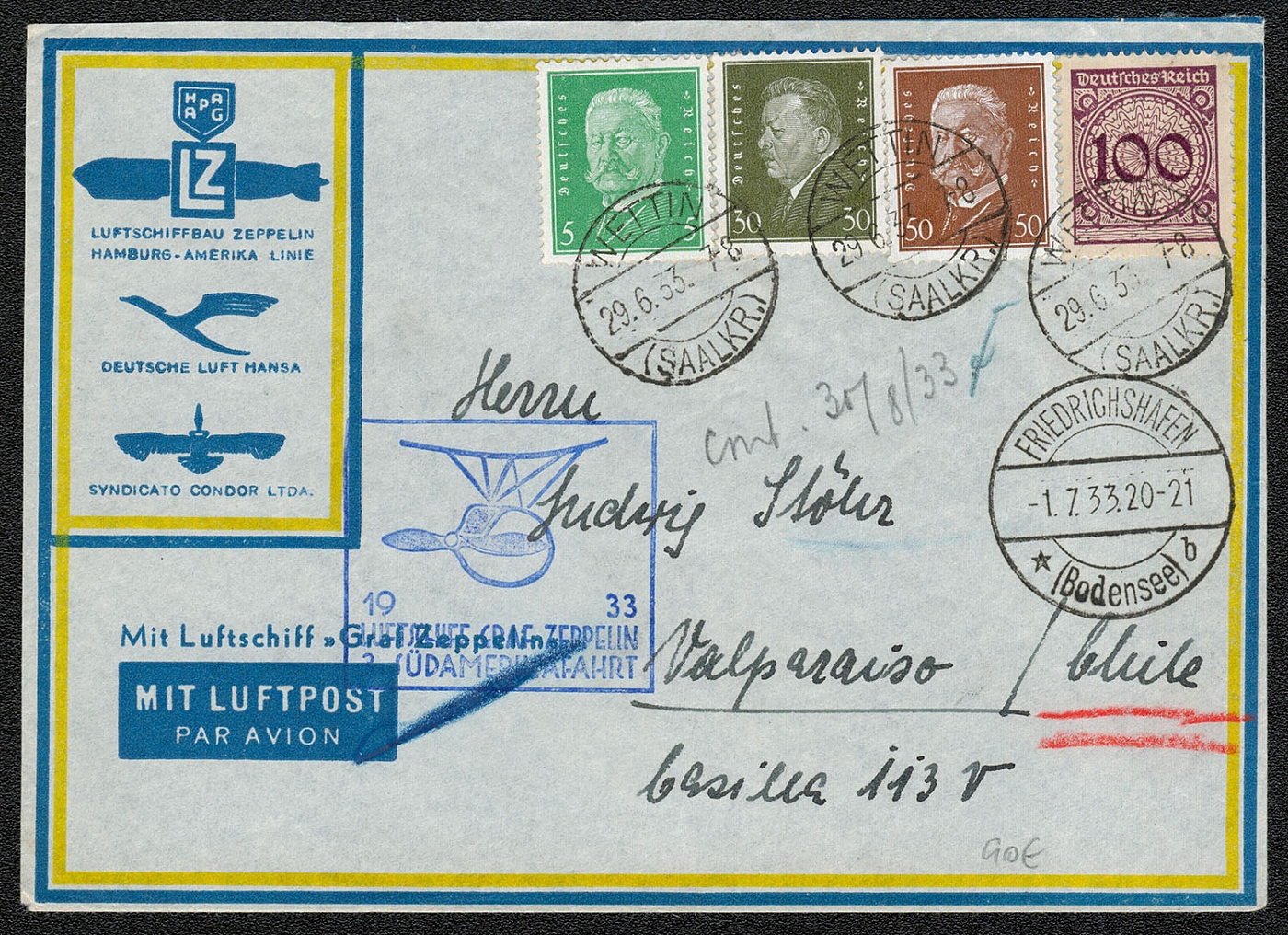
1933 Zeppelin cover to South america Wettin - Valparaiso
1933 Zeppelin cover to South america Wettin - Valparaiso
Sold for:
$55
578
$70
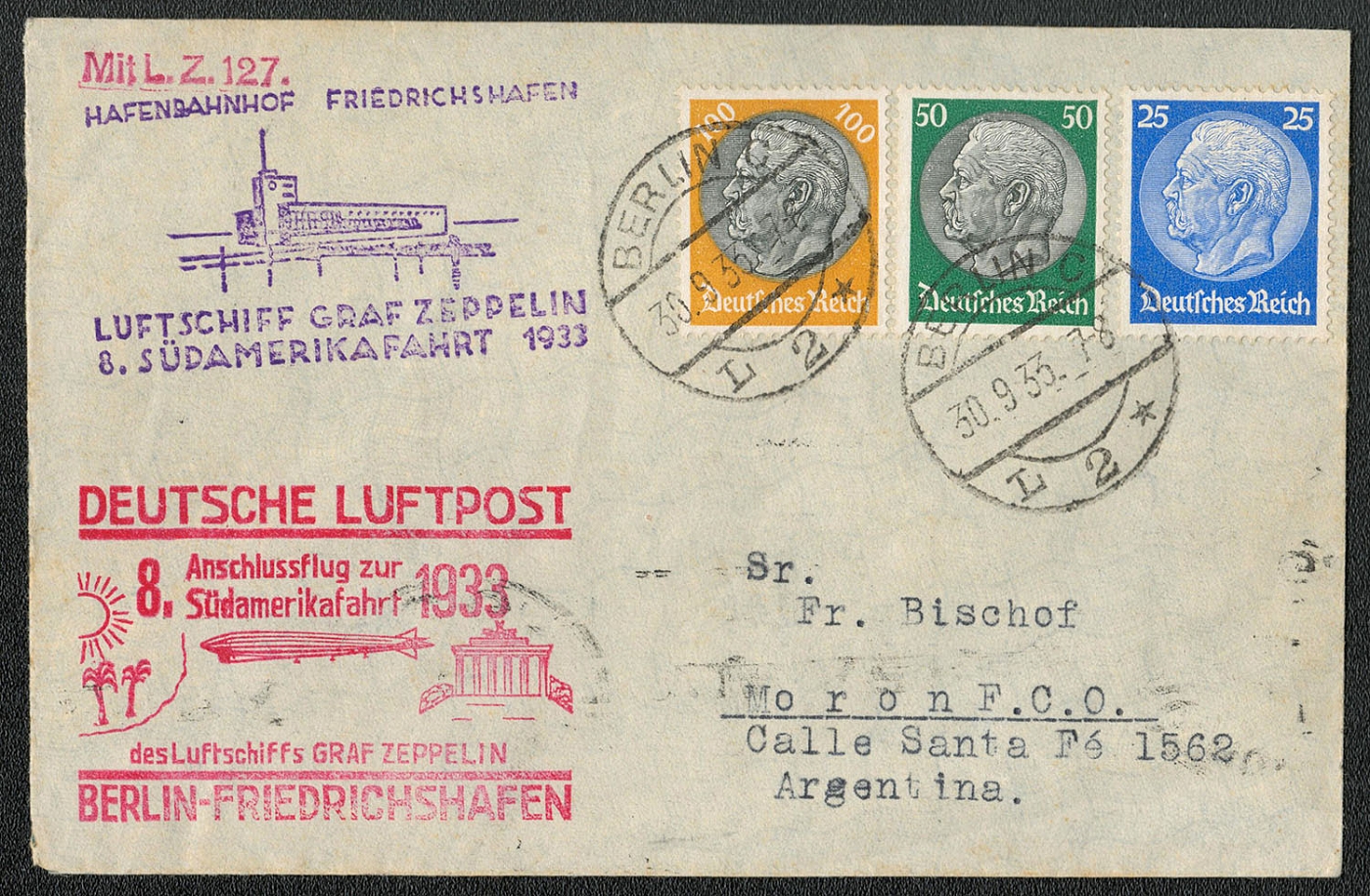
1933 Zeppelin cover to South america Berlin - Moron
1933 Zeppelin cover to South america Berlin - Moron
Sold for:
$70
579
-
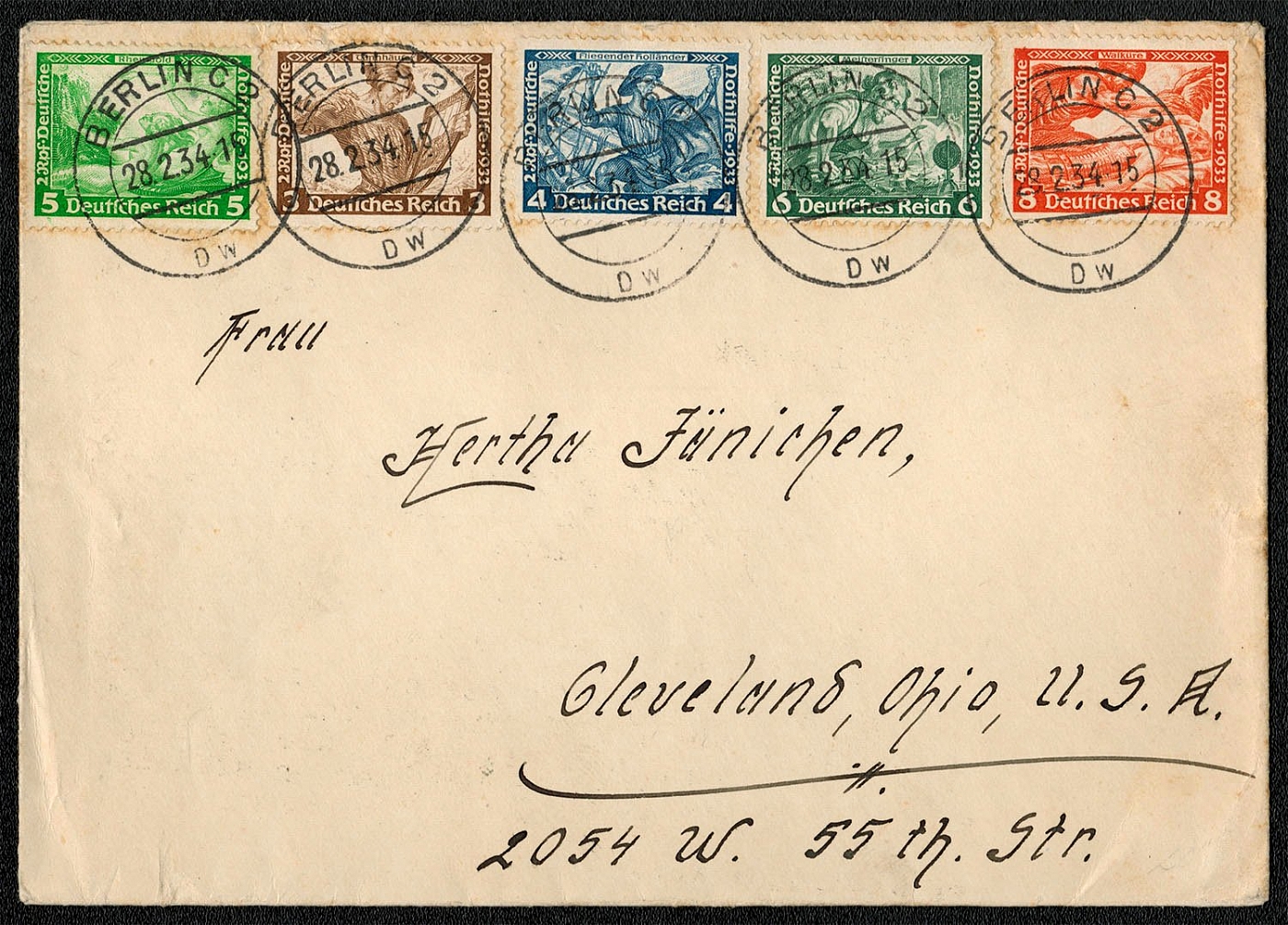
1934 Charity Issue for the German Winter Aid. postally used on cover to the United States posted 28 February in Berlin C-2.
Five values of the German Winter Aid issue postally used on cover to the United States posted 28 February 1934 in Berlin C-2.
Unsold
580
-
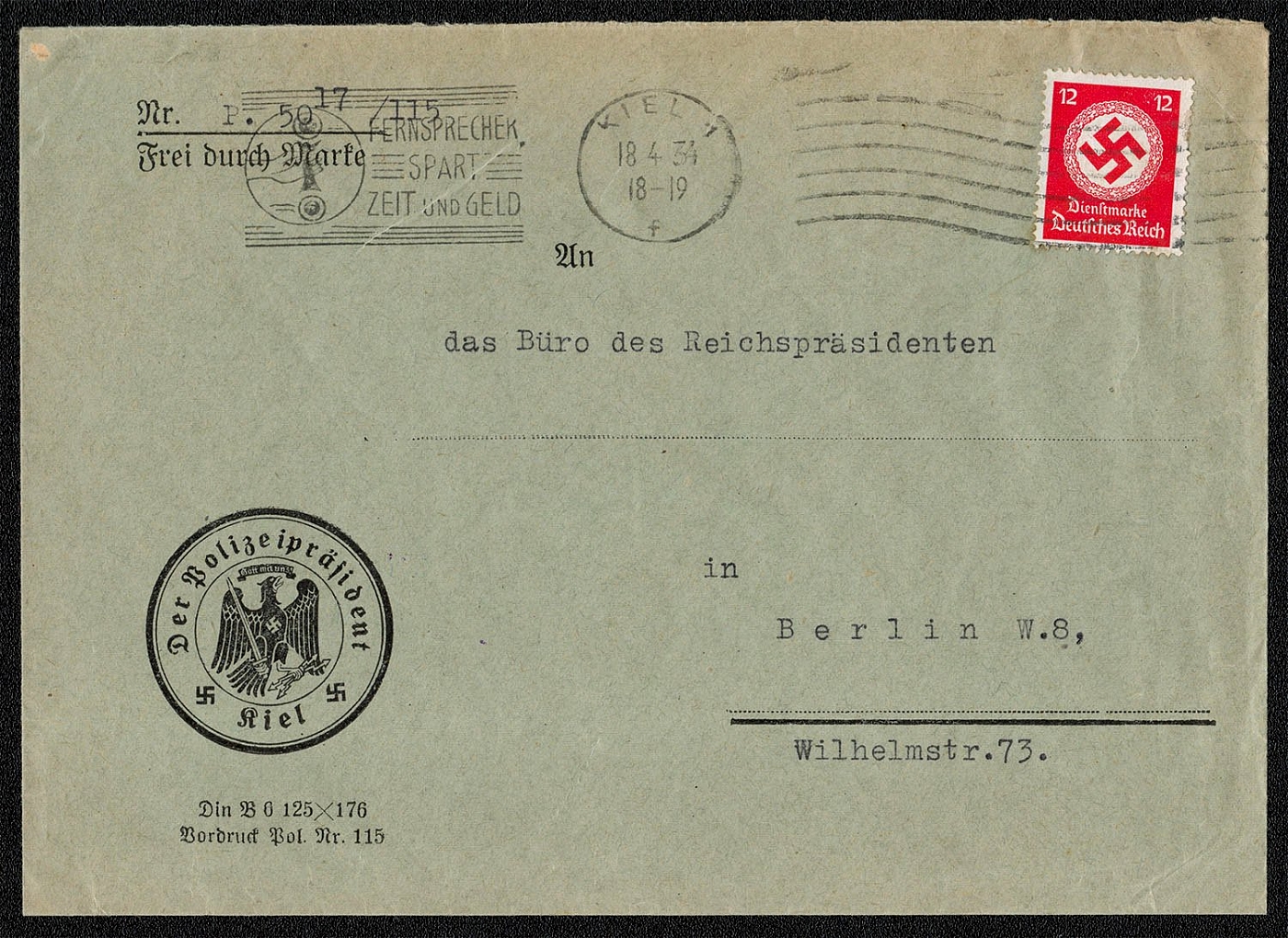
1934 Official cover with printed corner card franked with Scott 086 from the office of the Chief of Police Kiel
Official cover with printed corner card franked with Scott 086 from the office of the Chief of Police Kiel 18 April 1934. The cover was mailed to the Bureau of the Reich President on the famous Wilhelmstrasse in Berlin. The Wilhelmstrasse was a street crossing the Allee Unter den Linden and the Stresemannstrasse, east of the Brandenburg Tor in Berlin. After the German unification in 1871, Wilhelmstrasse was the address of several ministries, including the Foreign Office. The administration of German foreign policy until 1945 was therefore often simply called “the Wilhelmstrasse.”
Unsold
581
$8
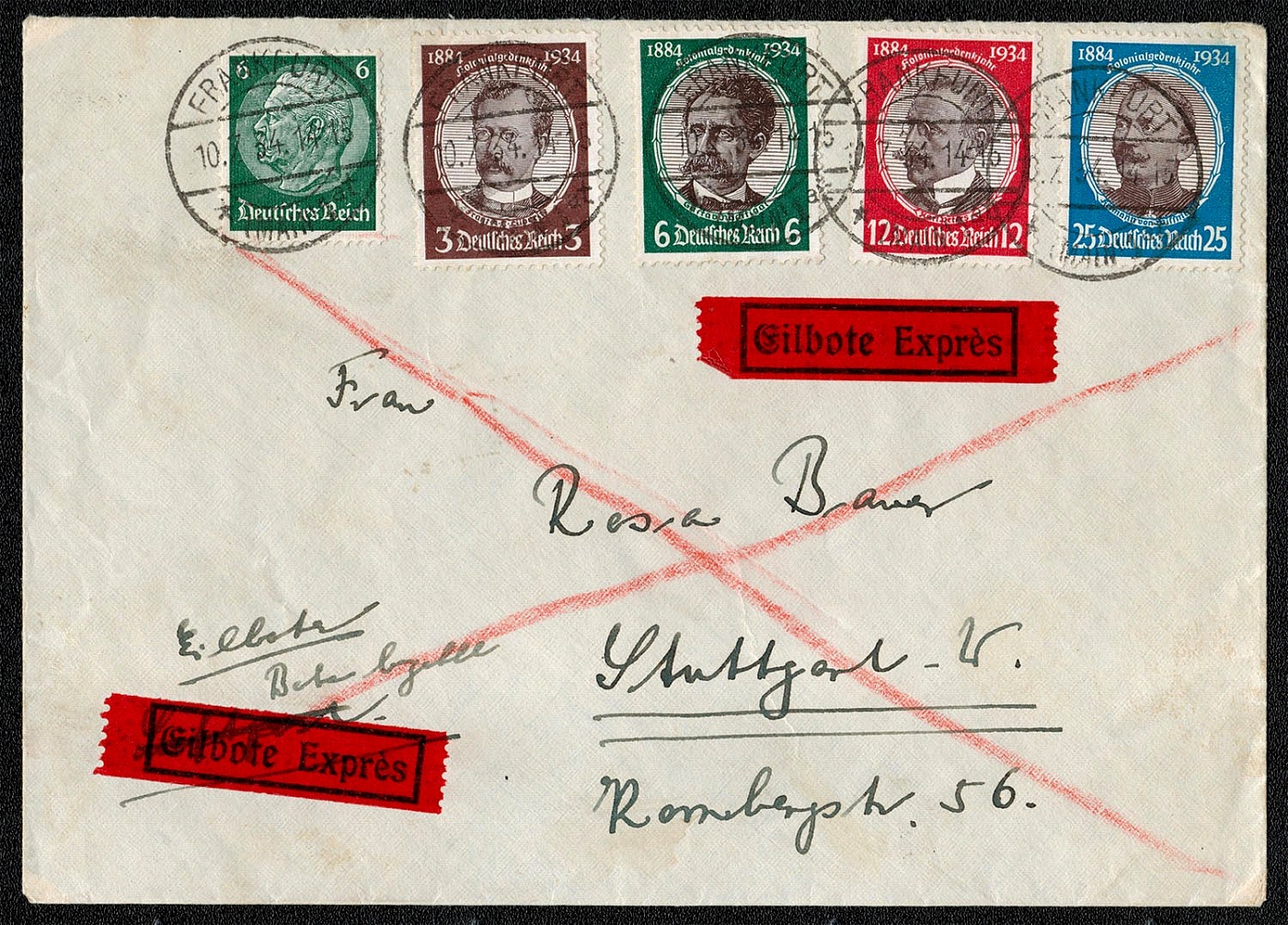
1934 Registered cover franked with Scott Nos. 406 and 432-435, posted in Frankfurt am Main
Registered cover franked with Scott Nos. 406 and 432-435, posted in Frankfort am Main, 10 July 1934. The cover was backstainped at the Stuttgart Telephone Office on the same date. Although this mailing was sent registered (the red “X”), the bright red labels cannot be translated at this time. * * * The German Colonial Explorers commemorative stamps were the first propaganda for Lebensraum (living space). The colonies had been acquired by legitimate, peaceful means and a great deal of money had been invested in their development. However, it was not until 1914 that they started showing any profit. After the war, the Treaty of Versailles took them away from Germany as part of the reparations. Hitler had little trouble, therefore, convincing the German people that they had every right to expect the return of their former colonies. Hitler himself had other ideas. in a speech given 18 October 1941, he stated, “For a colonial policy to make sense, one must first dominate Europe. In any case, the only colony I would like to have back would be the Caineroons—nothing else.” Hitler’s colony was Europe.
Sold for:
$8
582
$6
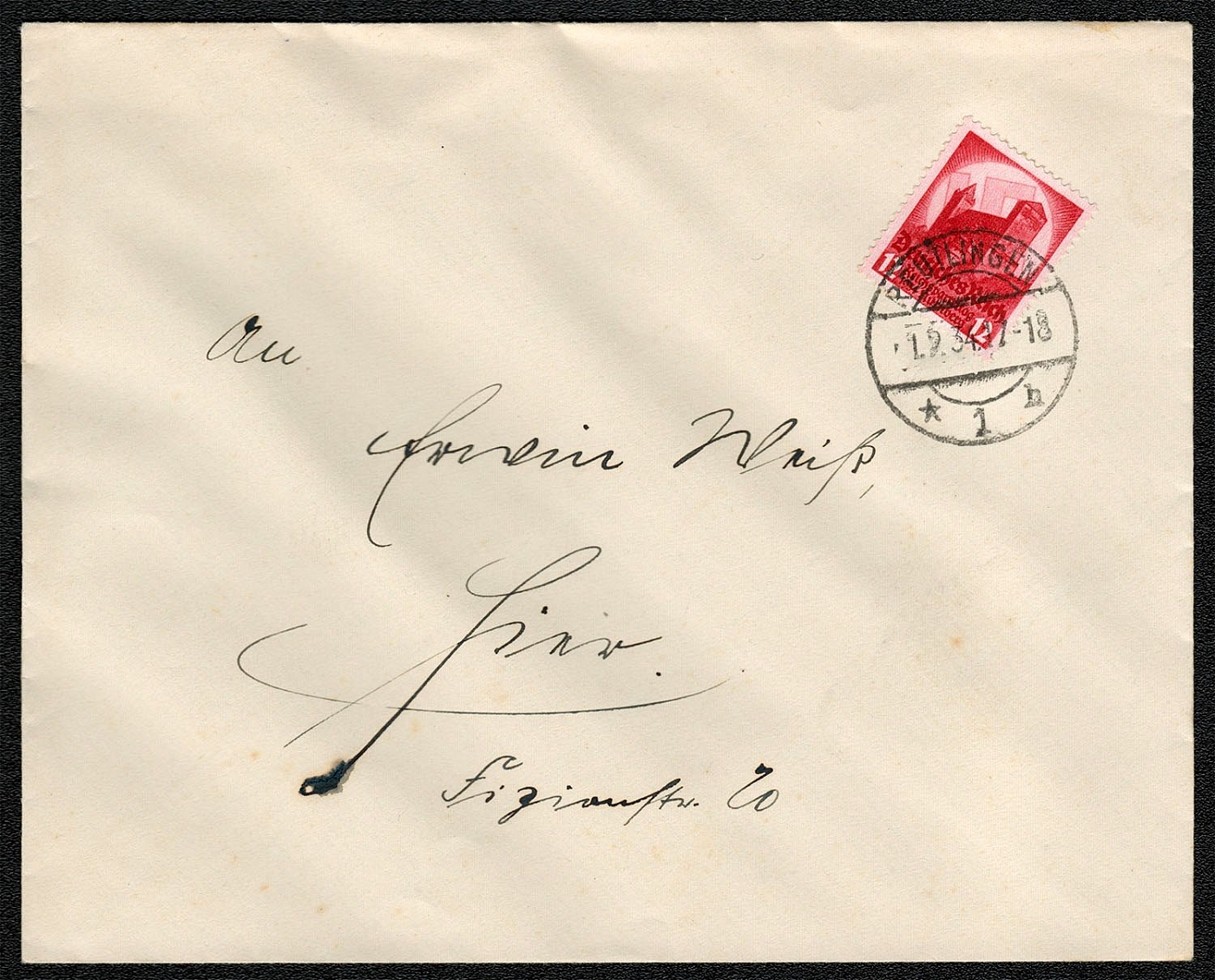
1934 Reutlingen, Baden-Wurttemberg franked with Scott 443 posted on the First Day of Issue
Philatelically prepared cover franked with Scott 443 posted on the First Day of Issue: 1 September 1934 Reutlingen, Baden-Wurttemberg.
Sold for:
$6
583
$5
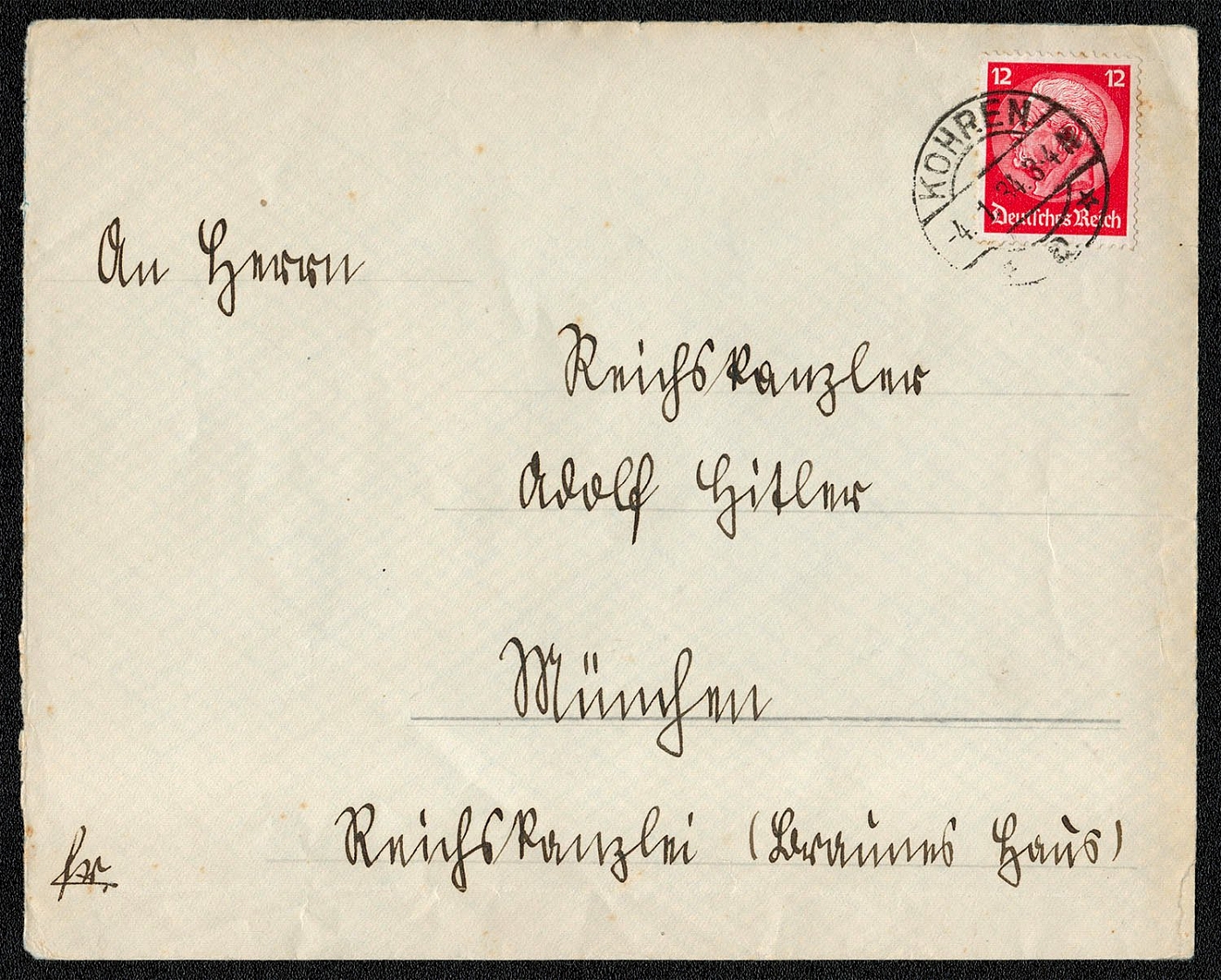
1934 Kohren addressed to Reichskanzler Adolf Hitler, Munich Reichskanzlei
Cover with franked with Scott 422 posted 4 January 1934 Kohren addressed to Reichskanzler Adolf Hitler, Munchen Reichskanzlei. (The exact location of Kohren is unknown.)
Sold for:
$5
584
$5
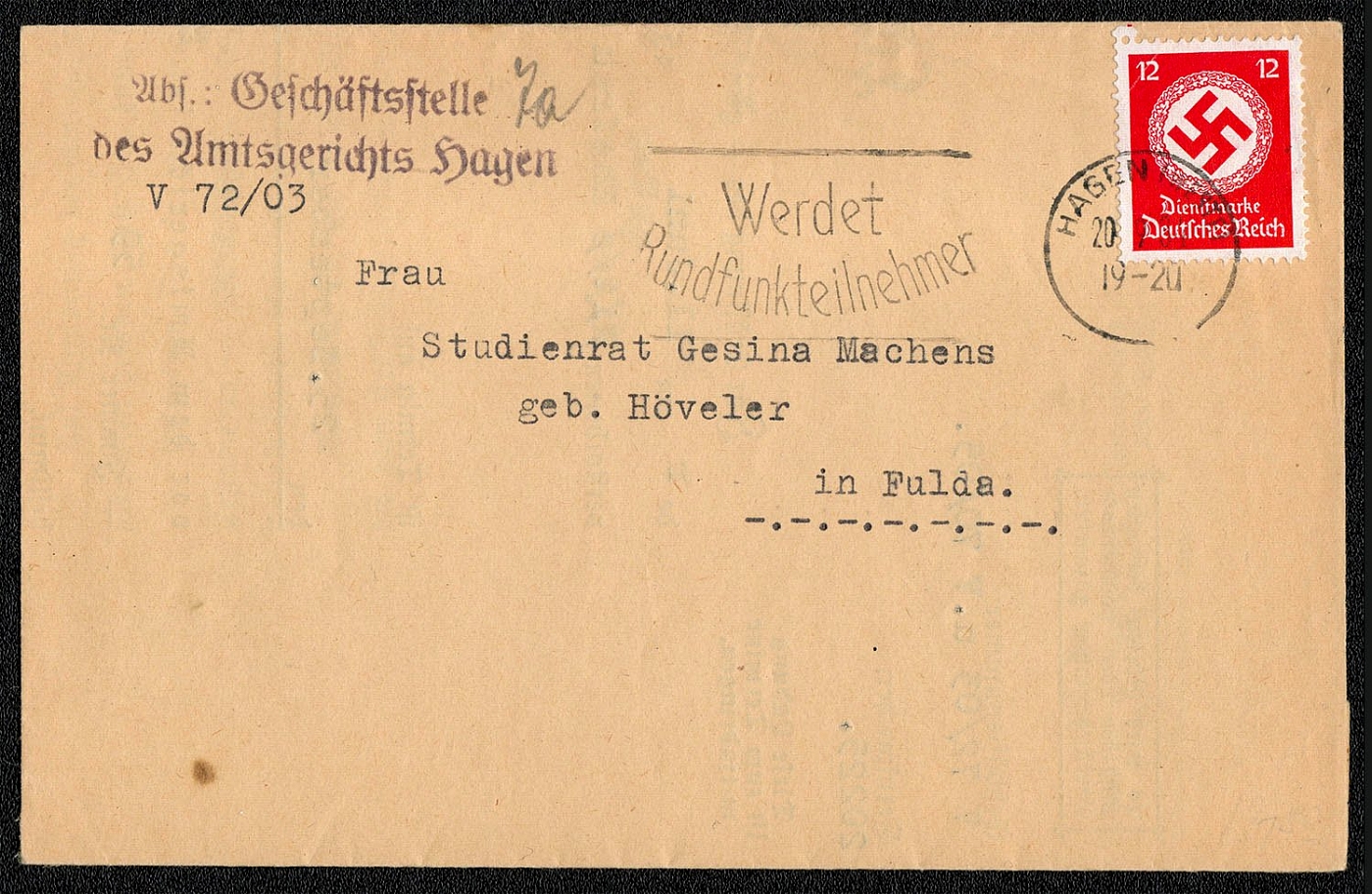
1934 Official mailing franked with Scott 086 Posted 20 September, and addressed to Assistant Schoolmaster Gesina Machens, born Hoveler, in Fulda
Official mailing franked with Scott 086 from the Posted 20 September 1934, and addressed to Assistant Schoolmaster Gesina Machens, born Hoveler, in Fulda. The message side of the cover (which is reproduced on the right) begins as follows . . . Summons In the matter of Mrs. Thekla Klein born Walker, widow Hoveler, deceased 11 June 1934 in Papenburg: The opening of the Last Will and Testament will be on 25 September 1934, 10:30 AM in the Office of the District Court of Hagen, 42 Heinitz Strasse.
Sold for:
$5
585
-
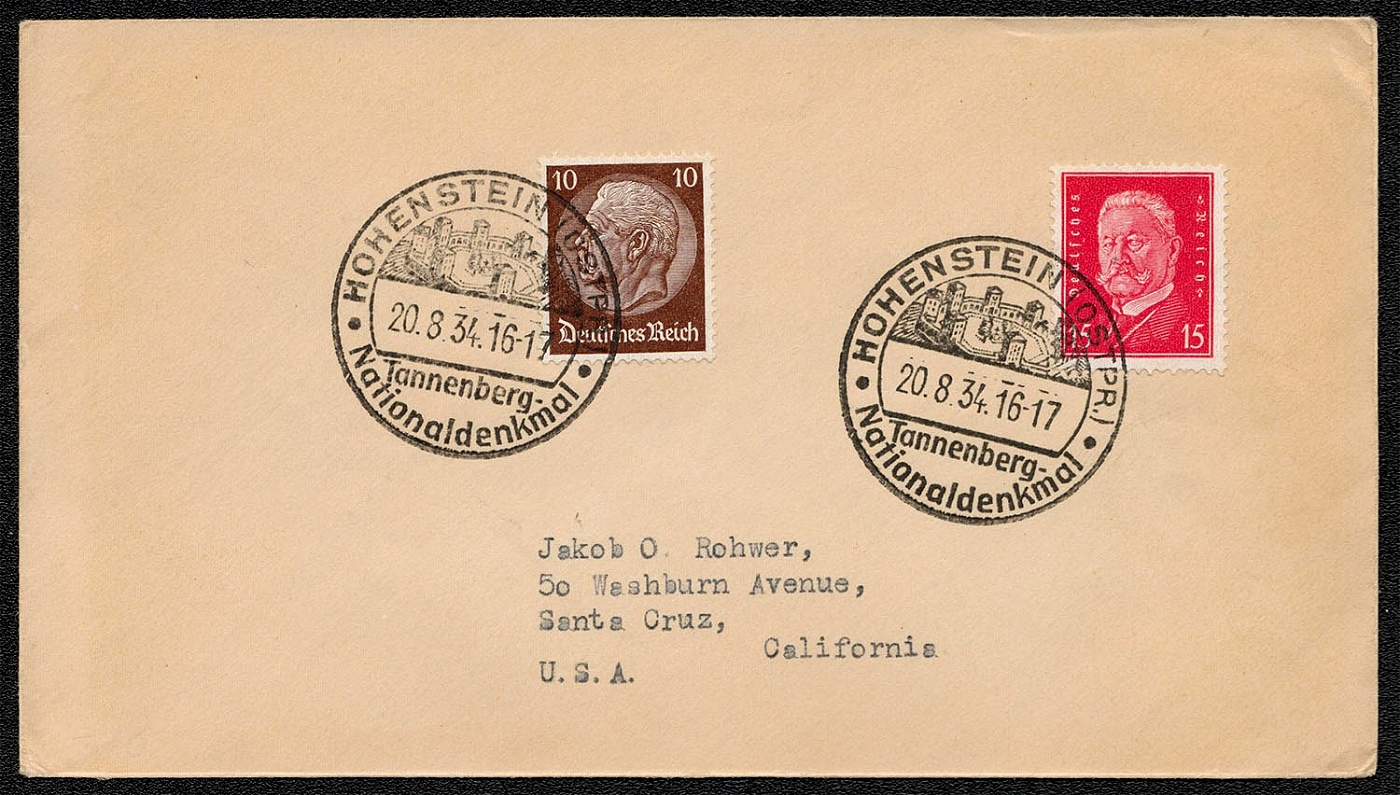
1934 Scott 374 and 421 postally used in Hohenstein to the United States
International Mail Scott 374 and 421 postally used to the United States. The cover, dated 20 August 1934, has a special cancellation commemorating the Tannenberg National Monument in Hohenstein, East Prussia where Hindenburg is buried.
Unsold
586
$5
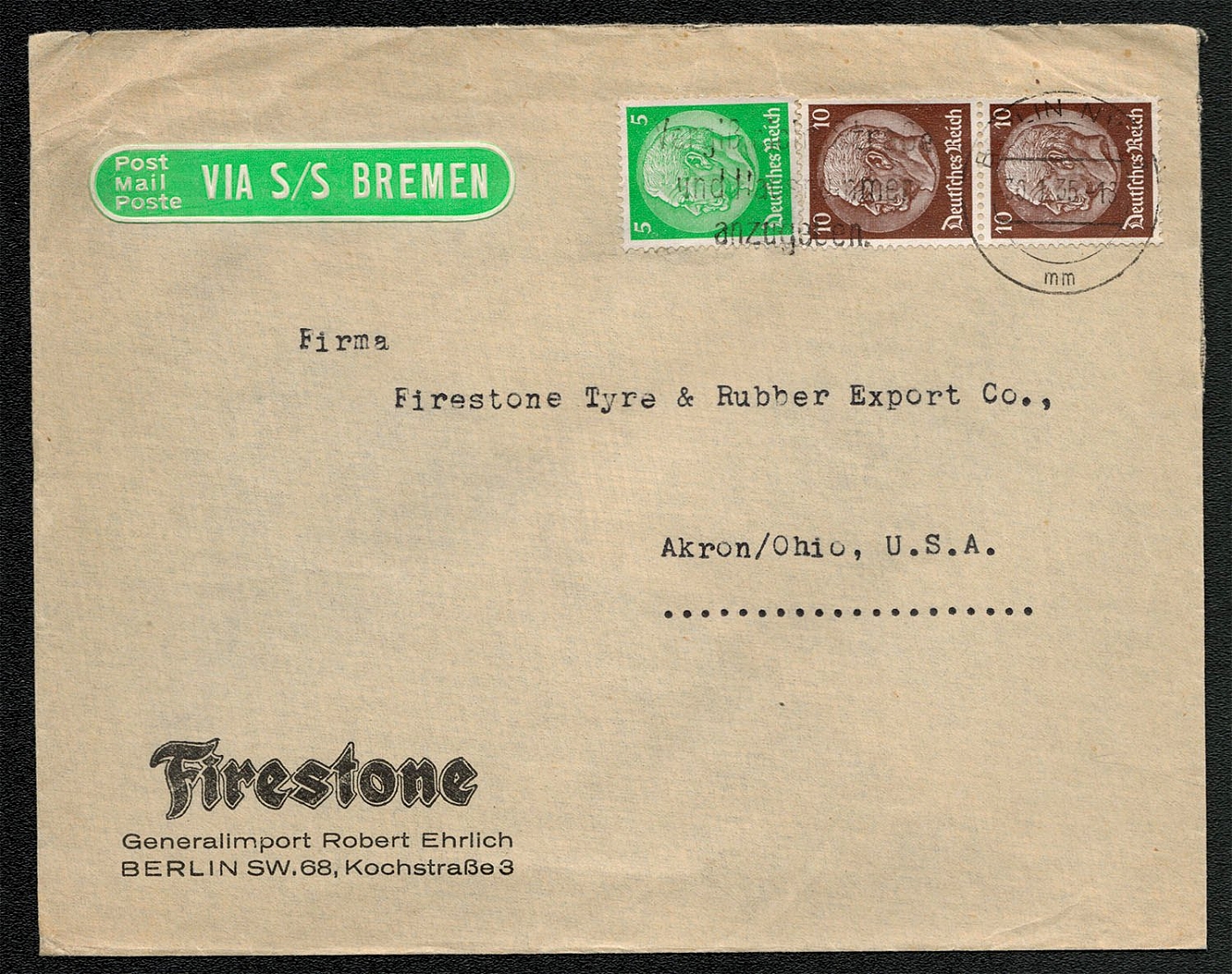
1935 Commercial cover franked with Scott 418 and a vertical pair of 421 meeting the 23 Rpf postal rate to the United States
Commercial cover franked with Scott 418 and a vertical pair of 421 meeting the 23 Rpf postal rate to the United States. Mailed via the Steamship Bremen from Berlin NW 30 January 1935.
Sold for:
$5
587
-
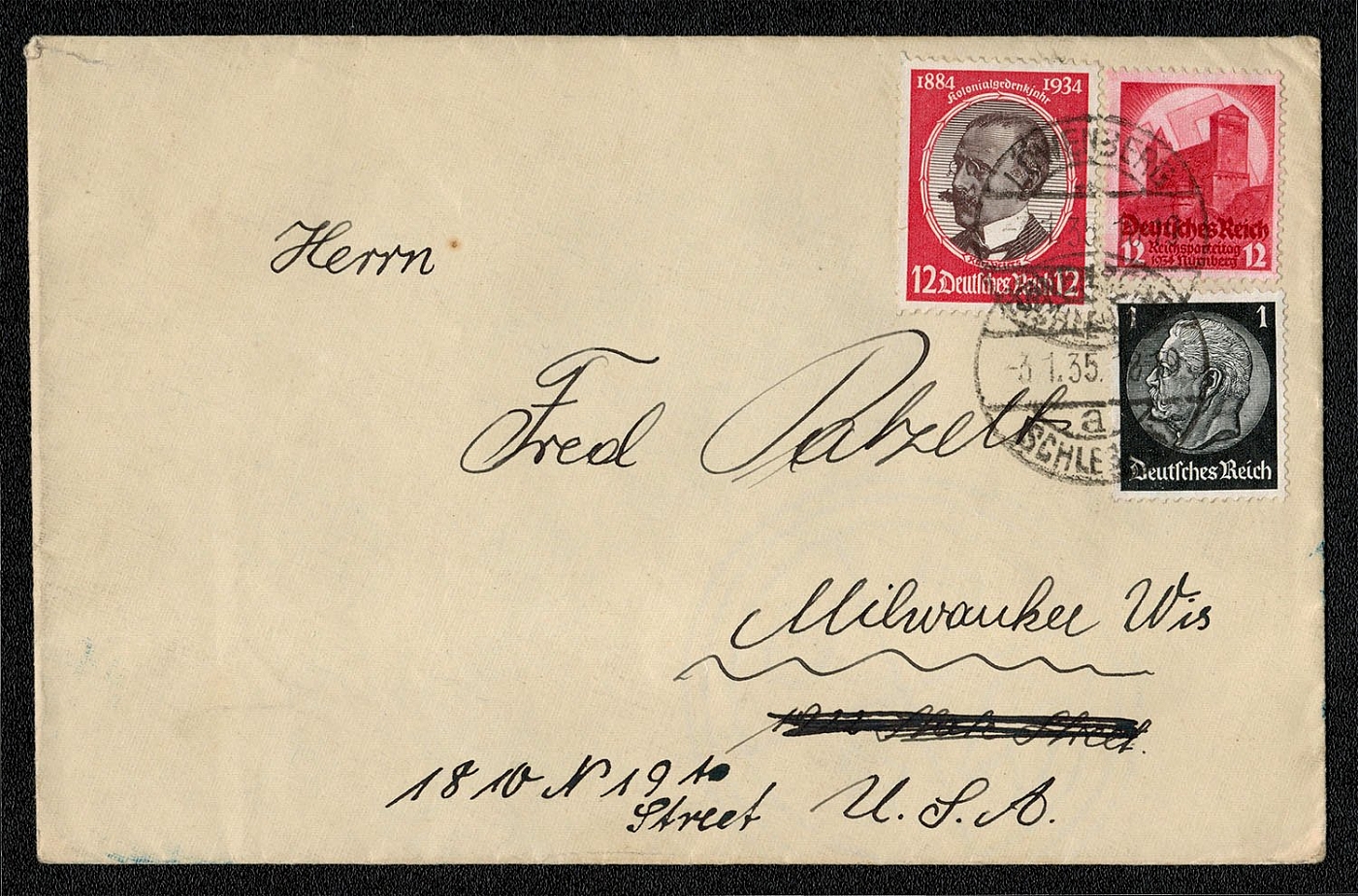
1935 Cover addressed to Milwaukee, Wisconsin posted in Lowenberg on 3 January
Cover addressed to Milwaukee, Wisconsin posted in Lowenberg (Schle)* on 3 January 1935. Franked with the 1 Rpf. value of the 1933-36 Hindenburg issue, the 12 Rpf. value (Hermann von Wissmann) of the 1934 Lost Colonies Issue, and the 12 Rpf value of the 1934 Reichsparteitag Issue. *Schle is an abbreviation of Schlesien (Silesia). In 1935, Lowenberg, about 60 kilometers east of Gorlitz, had approximately 7000 inhabitants. It was one of the oldest towns in Schlesien, and boasted the Hotel du Roi, which was frequently visited by Frederick the Great. Most of the Schlesien region was incorporated into Poland after WWII.
Unsold
588
$5
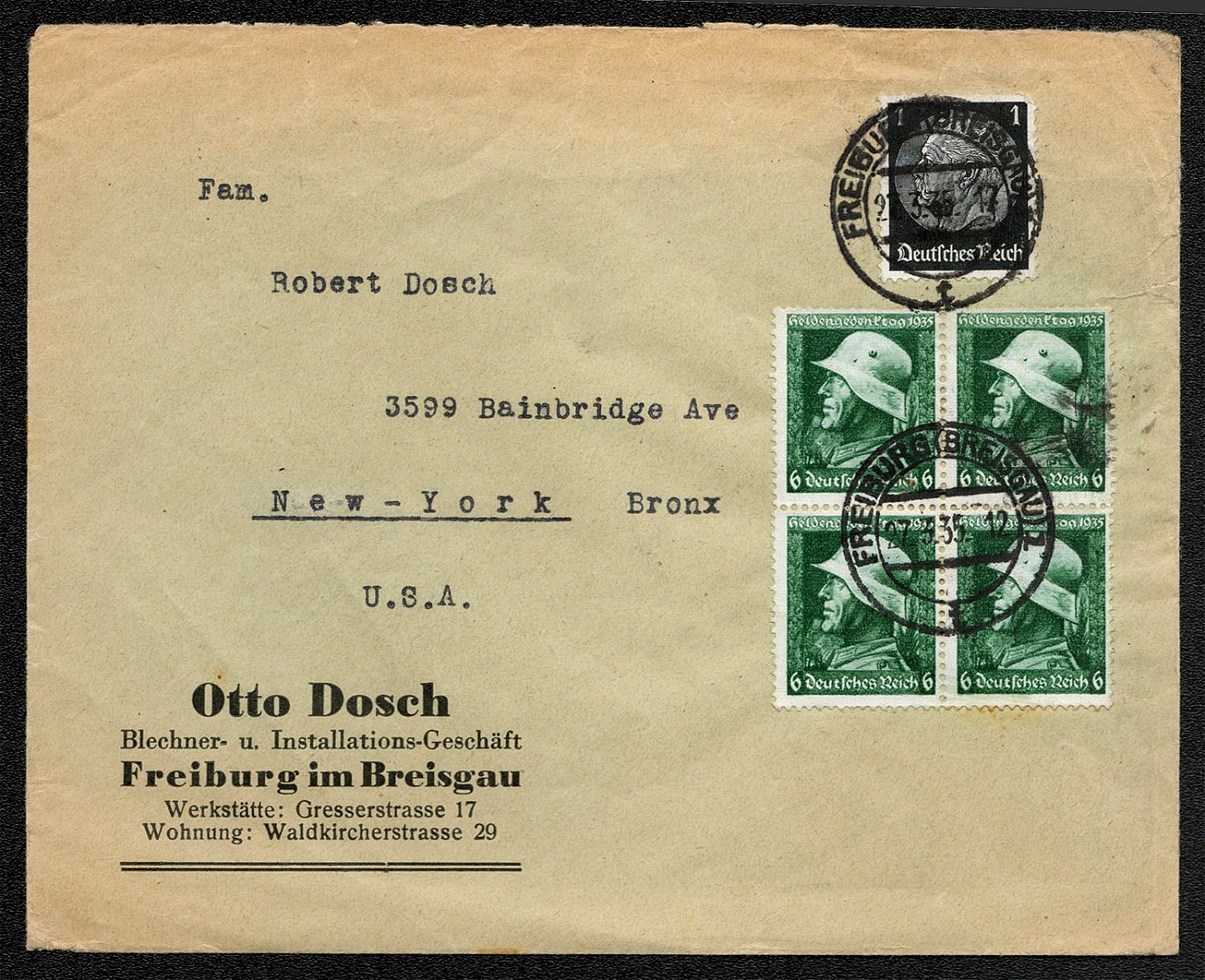
1935 Postally used cover franked with Scott No. 415, and a block of Scott No. 452 mailed to the United States from Freiburg im Breisgau
Postally used cover franked with Scott No. 415, and a block of Scott No. 452 mailed to the United States from Freiburg im Breisgau on 27 March 1935. § Freiburg im Breisgau is a manufacturing city in at the western foot of the Black Forest. Its population in the mid 1930s was approximately 99,000.
Sold for:
$5
589
$50
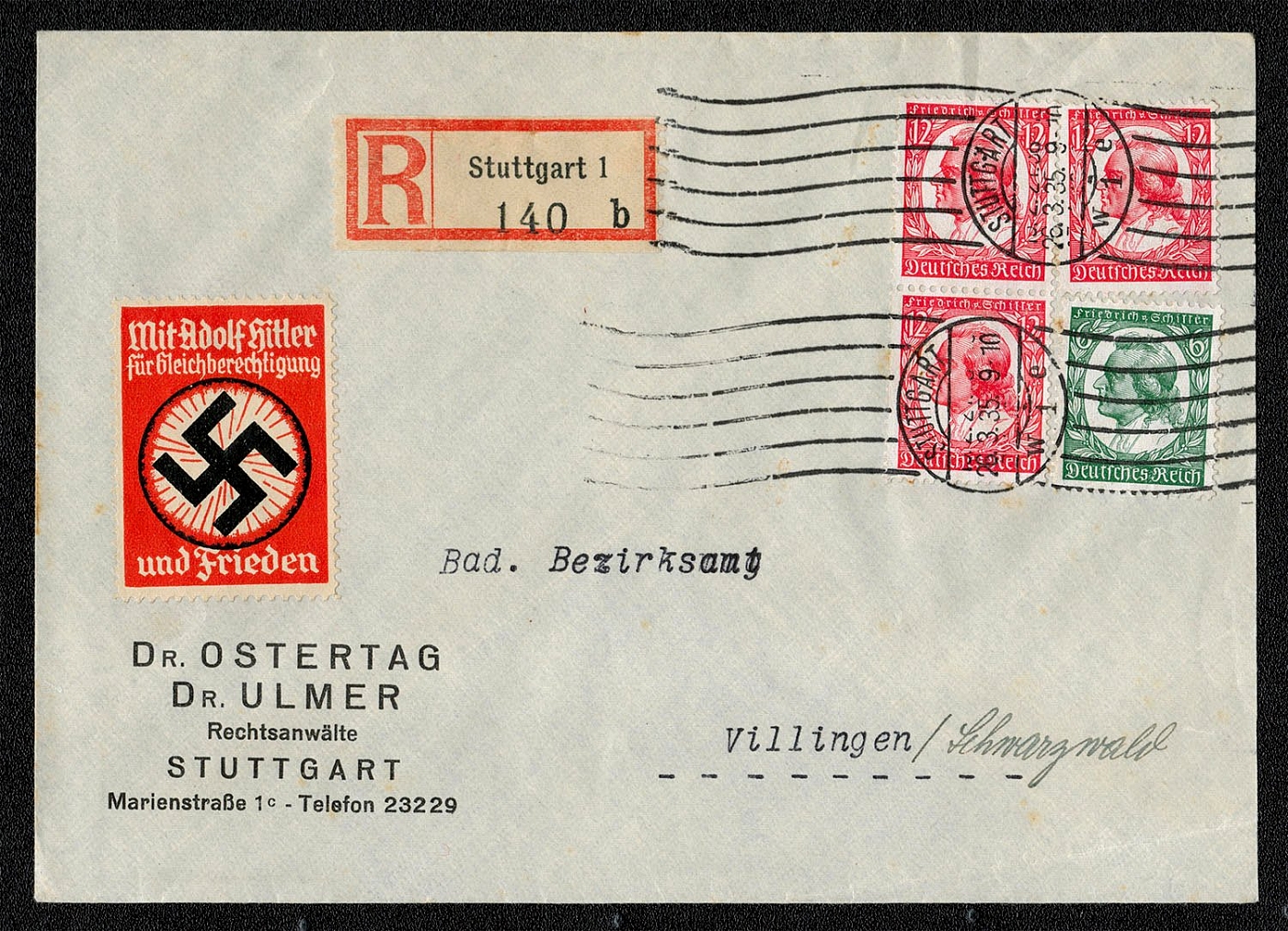
1935 Registered cover from Postamt Stuttgart with Propaganda label
Registered cover from Postamt Stuttgart 1 dated 26 March 1935 and franked with Sc 446 and multiple copies of Sc 447. The letter was sent from the offices of Drs. Ostertag and Ulmer, attorneys on Marien Street in Stuttgart, to the Baden District Office in Villingen, an industrial town and clock-making center in the Black Forest region in the south of Germany. The general donation propaganda label translates as: “With Adolf Hitler for Equal Rights and Freedom.”
Sold for:
$50
590
-
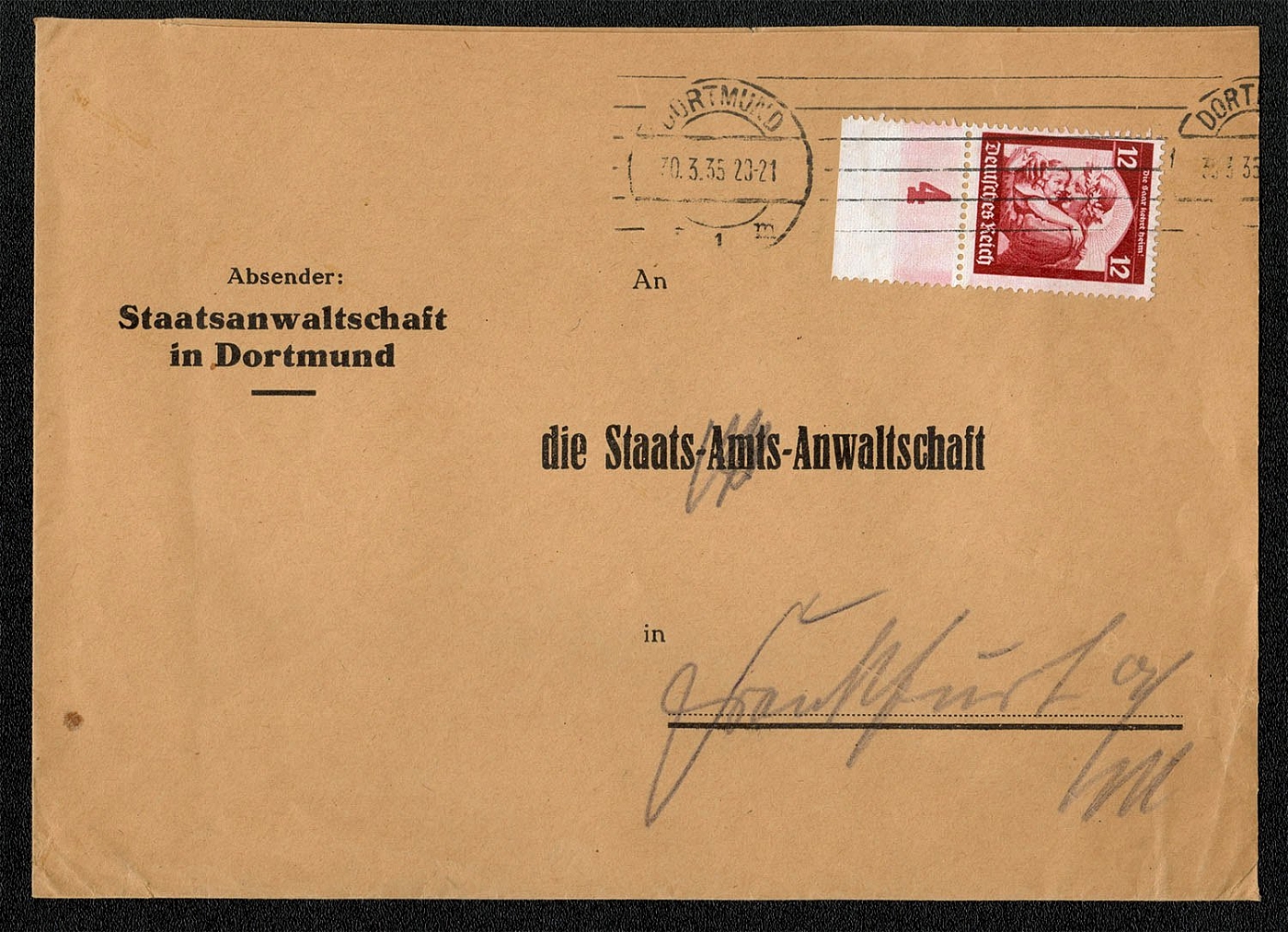
1935 Cover franked with the 12 Rpf value of the Saarabstimmung Issue mailed 30 March from the Dortmund
Cover franked with the 12 Rpf value of the Saarabstimmung Issue mailed 30 March 1935 from the Dortmund branch office of the Staatsanwaltschaft (State Bar Association) to the Frankfurt am Main branch office.
Unsold
591
$50
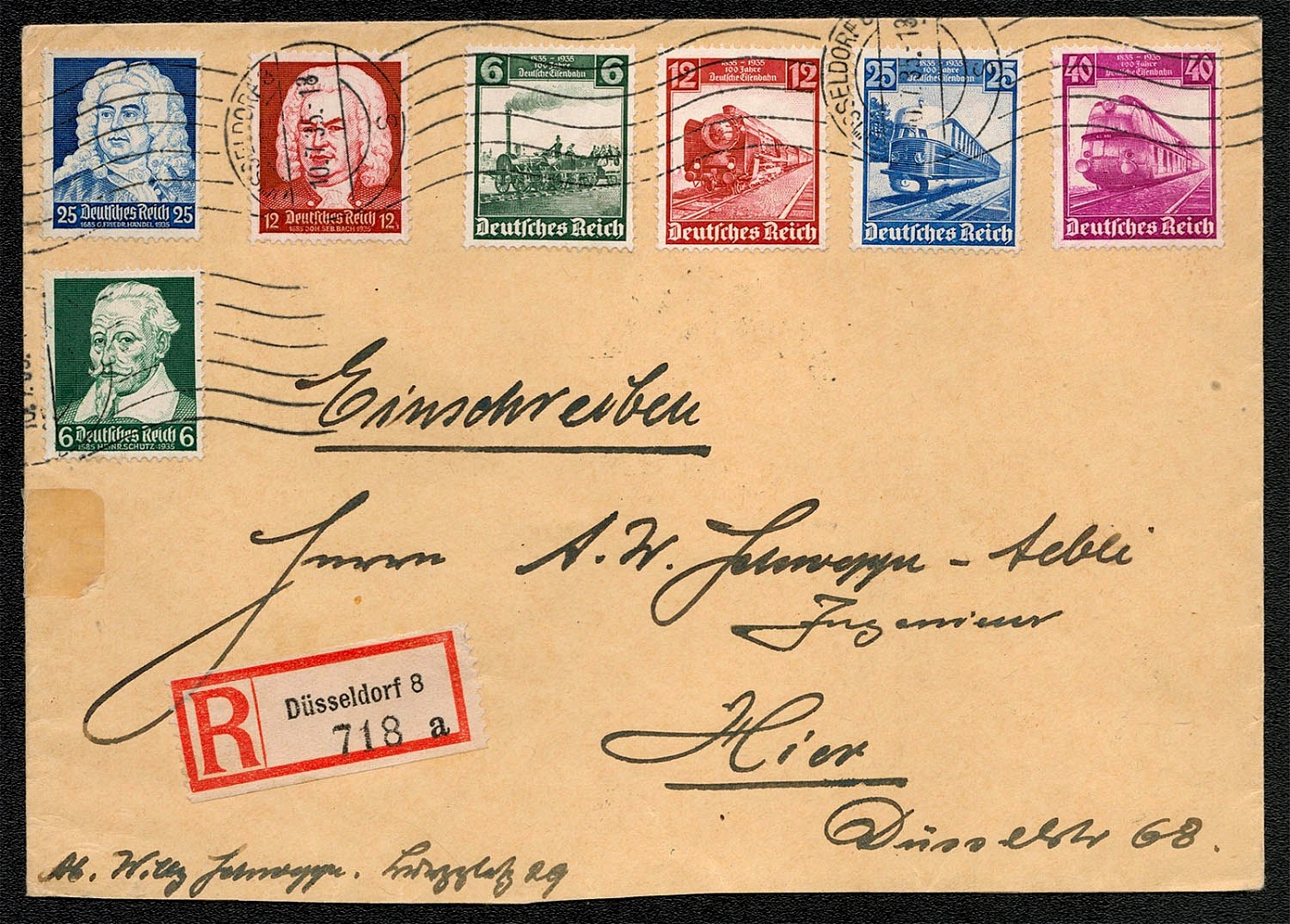
1935 Registered and postally used cover franked with a complete set of the Schutz, Bach and Handel issue and the Eisenbahn issue on the latter’s first day of issue
A philatelically prepared, but registered and postally used cover franked with a complete set of the Schutz, Bach and Handel issue and a complete set of the Eisenbahn issue on the latter’s first day of issue. Mailed from Dusseldorf 8 10 July 1935. In German philatelic terms a card or cover with the complete issue is known as a Satzbrief.
Sold for:
$50
592
$20
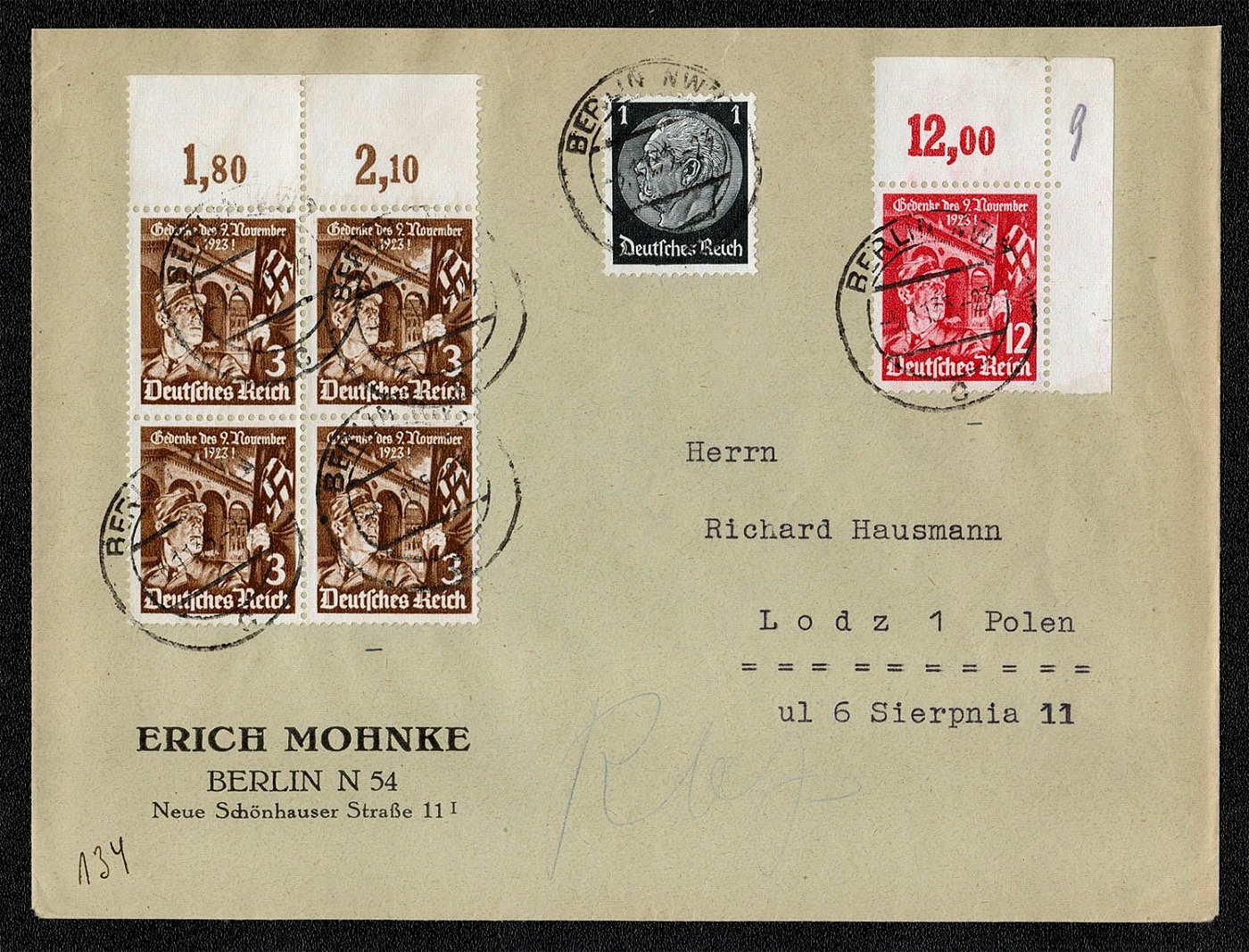
1935 Postally used commercial cover to Lodz, Poland. Postmarked Berlin NW 7, 5 November 1935, the first day of issue.
Postally used commercial cover franked with plate block of Scott 467, plate single of 468, and a single of 415, making the 25 Rpf rate to Lodz, Poland. Postmarked Berlin NW 7, 5 November 1935, the first day of issue.
Sold for:
$20
593
$12
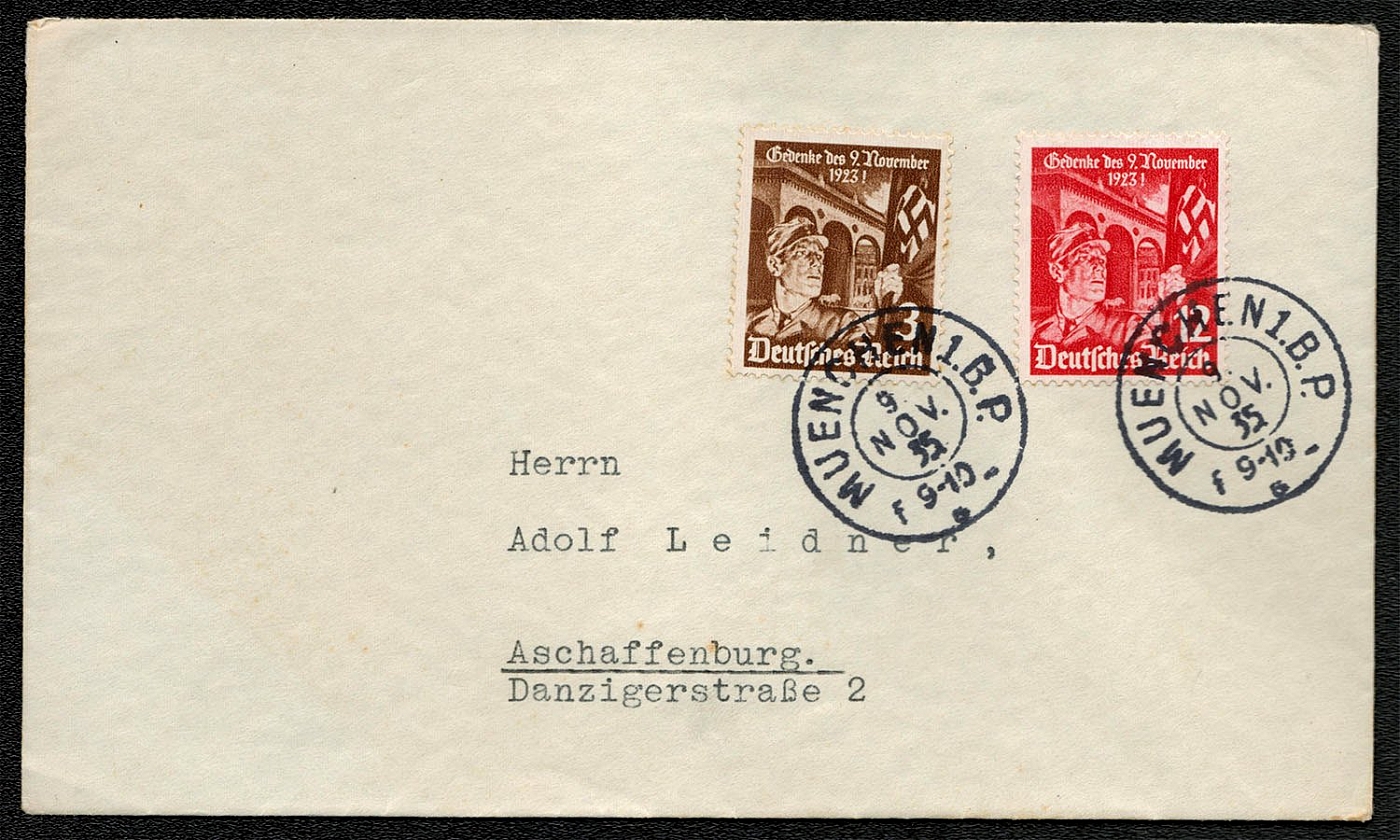
1935 Postally used cover franked with Scott Nos. 467-8 and posted in Munich B.P.l. on 9 November
"Postally used cover franked with Scott Nos. 467-8 and posted in Munich B.P.l. on 9 November 1935. This was not the first day of issue, but the 12""' Anniversary of the Hitler Putsch."
Sold for:
$12
594
-
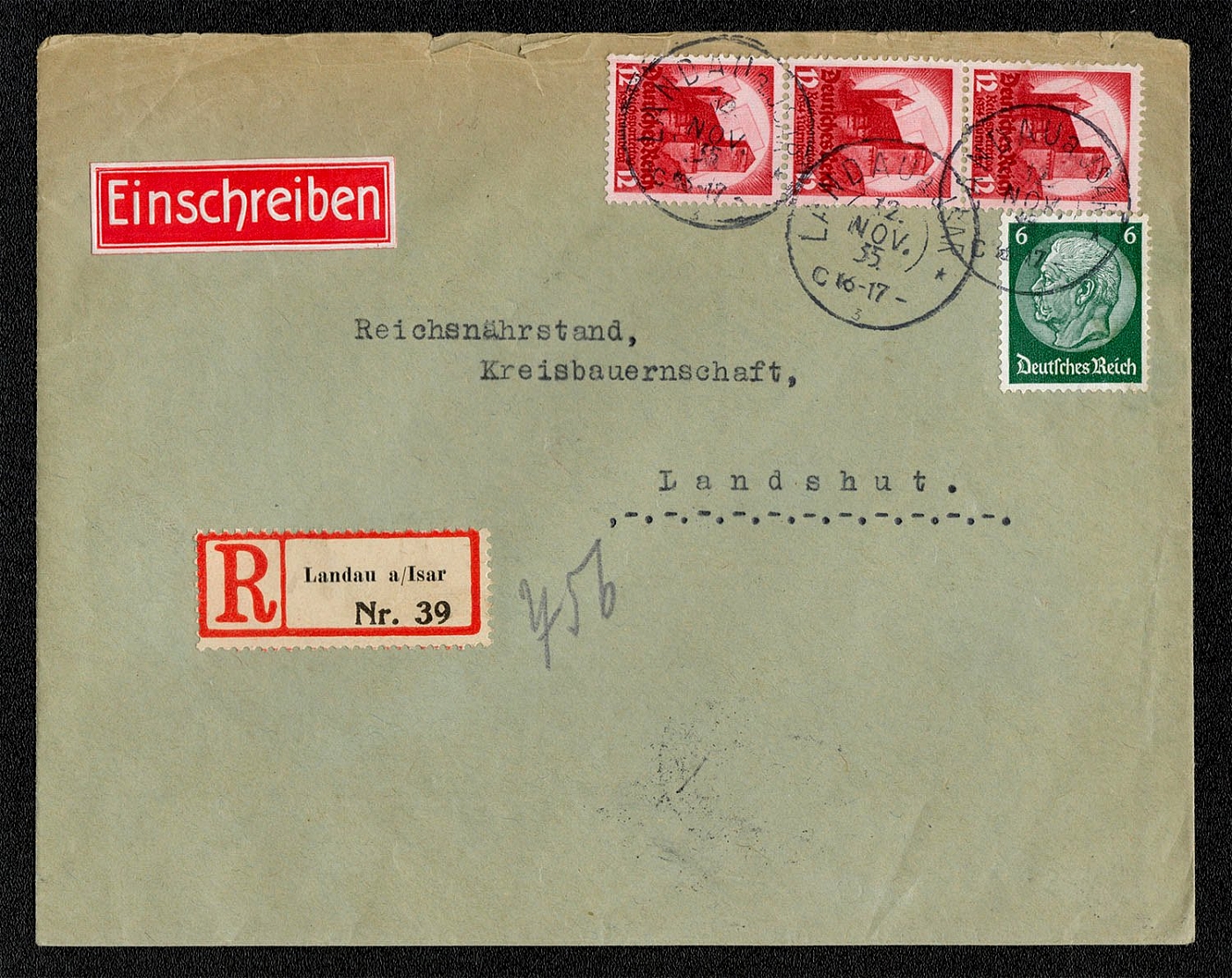
1935 Scott No. 443 (strip of 3) and No. 419 used on registered commercial cover posted 12 November in Landau
Scott No. 443 (strip of 3) and No. 419 used on registered commercial cover posted 12 November 1935 in Landau a/Isar. Landau a/Isar (Landau on the River Isar), a city in Bavaria 18 miles northwest of Karlsruhe was noted for its large cattle market in the Thirties. Landau’s population in 1935 was approximately 15,000. The Isar River, 163 miles long, rises in Tirol and flows through Munich past Landshut northwest into the Danube. It is not navigable. “Move upwards toward prosperity through savings!” * “Watching over you since before the unstable high interest!” Reverse of the 12 November 1935 commercial cover advising of the investment opportunities available through the Gewerbe- und Landwirtschaftsbank (Trades and Agricultural Bank) of Landau a/Isar, an institution that watched over its patrons even before the 1920s inflationary period.
Unsold
595
$10
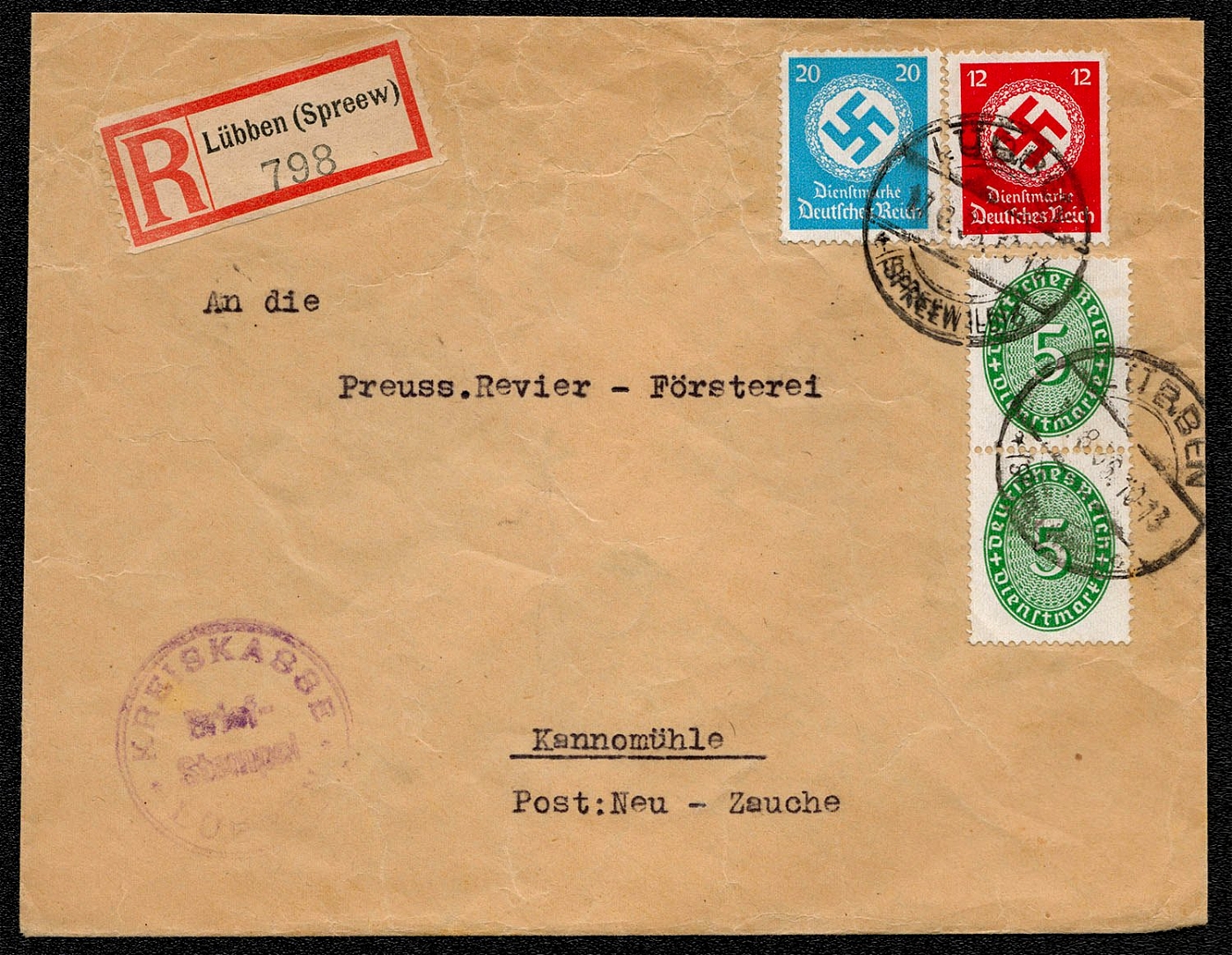
1936 Official mailing franked with Scott 065, 086 and 088 from the District Pay Office of Lubben
(The Official Stamp Issues of 1927 and 1934) Official mailing franked with Scott 065, 086 and 088 from the Kreiskasse Lubben (District Pay Office of Lubben). The cover was posted in on 17 August 1936, and addressed to the Prussian Quarter Forest Ranger in the town of Neuzauche. The entire Official Stamp issue of 1927-33 was brought out in various values from 1927 onwards, with many color changes. Post offices were only supplied with the issue of 1934 as they ran out of the 1927 issue. The Lubben post office, therefore, had a supply of the 1927 5 Pfg. stamps as late as 1936.
Sold for:
$10
596
$12
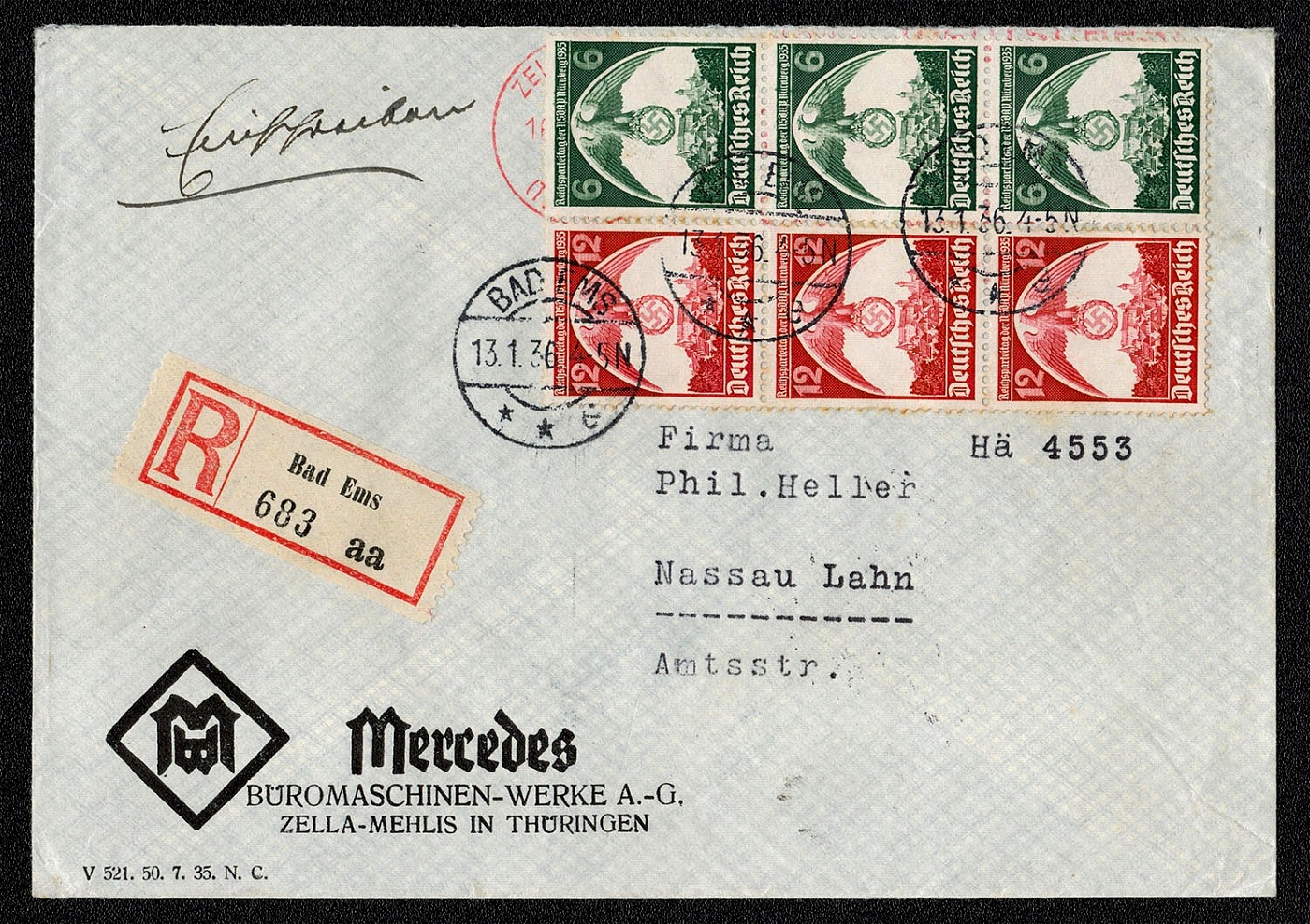
1936 A postally used, registered commercial cover from the Mercedes Office of Machine Works
A postally used, registered commercial cover from the Mercedes Office of Machine Works franked with multiple copies of Sc 465-6 which commemorate the 7lh Nurnberg Party Rally. This cover was used twice for mailing inasmuch as a red Zella-Mehlis metered stamp is visible under the franking. (The corner card confirms this point of origin.) Nevertheless, the most recent mailing was from Bad Ems on 13 January 1936 to Nassau Lahn. The Lahn River rises in the southern part of Westphalia and winds through the unstratified limestone and greywacke formations of the Rhenish Slate Hill District. Part of the river has been canalized, and numerous locks have been constructed to meet the rapid fall of the stream. The scenery vies with that of the most beautiful of the valleys of the Rhine. The features of interest include hills rising to a height of 800 feet above the floor of the valley, picturesque little towns and ruined castles. Bad Ems is situated on both banks of the Lahn in a narrow valley enclosed bywooded rocky heights. It had a population of approximately 9000 in the early 1930s. Nassau, a town of some 3000 inhabitants is situated on the right bank of the Lahn. On the opposite bank of the Lahn rises a wooded eminence crowned by the ruined castles of Nassau and Stein.
Sold for:
$12
597
$10
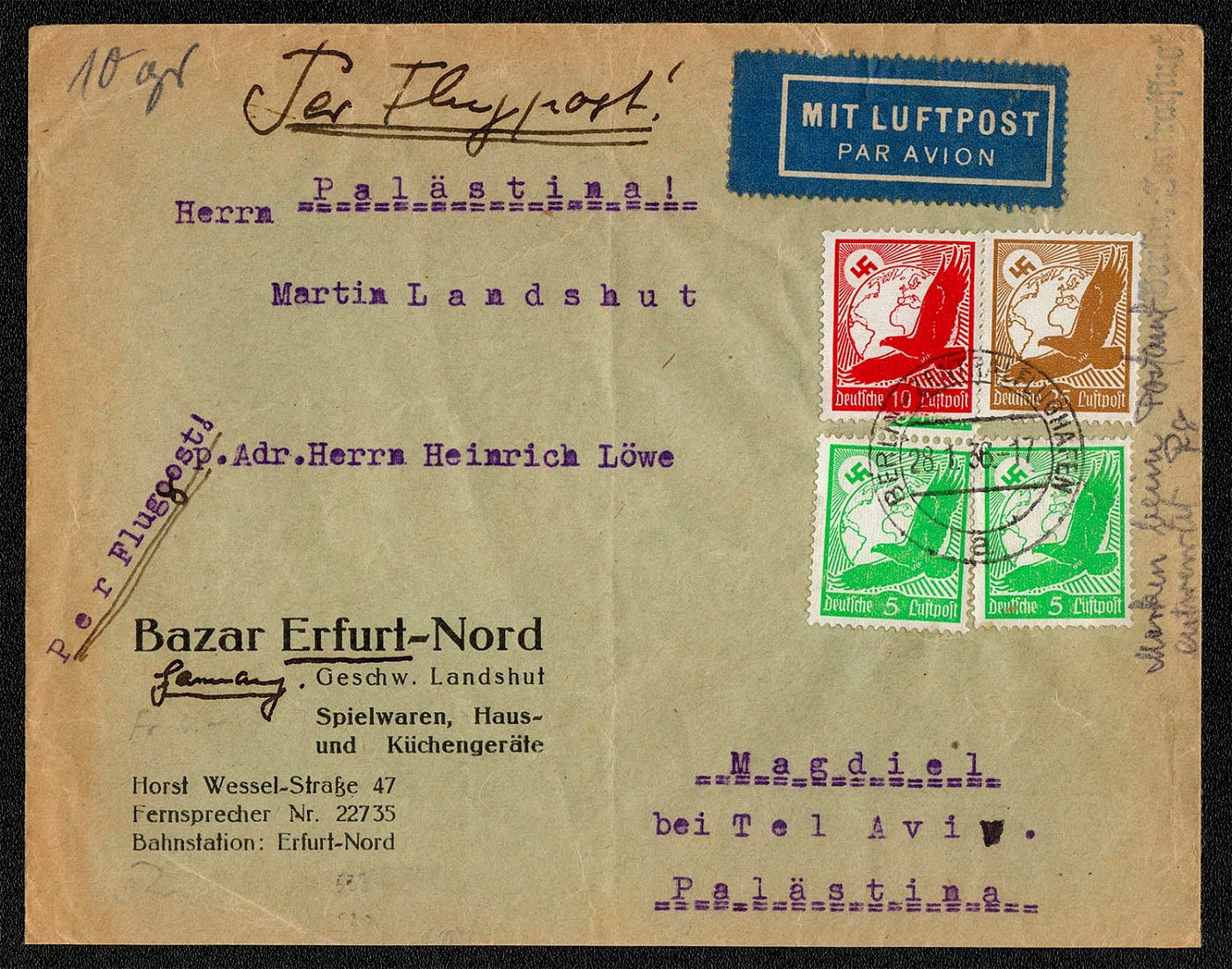
1936 Airmail cover sent from Berlin-Zentral Flughafen on 28 January 1936 to Magdiel by Tel Aviv
Air post cover sent from Berlin-Zentral Flughafen on 28 January 1936 to Magdiel by Tel Aviv, franked with Sc C46, C47 and C50. The letter reached its destination on 2 February. The Bazar Erfurt-Nord, located at 47 Horst Wessel Strasse, sold toys, household and kitchen utensils.
Sold for:
$10
598
-
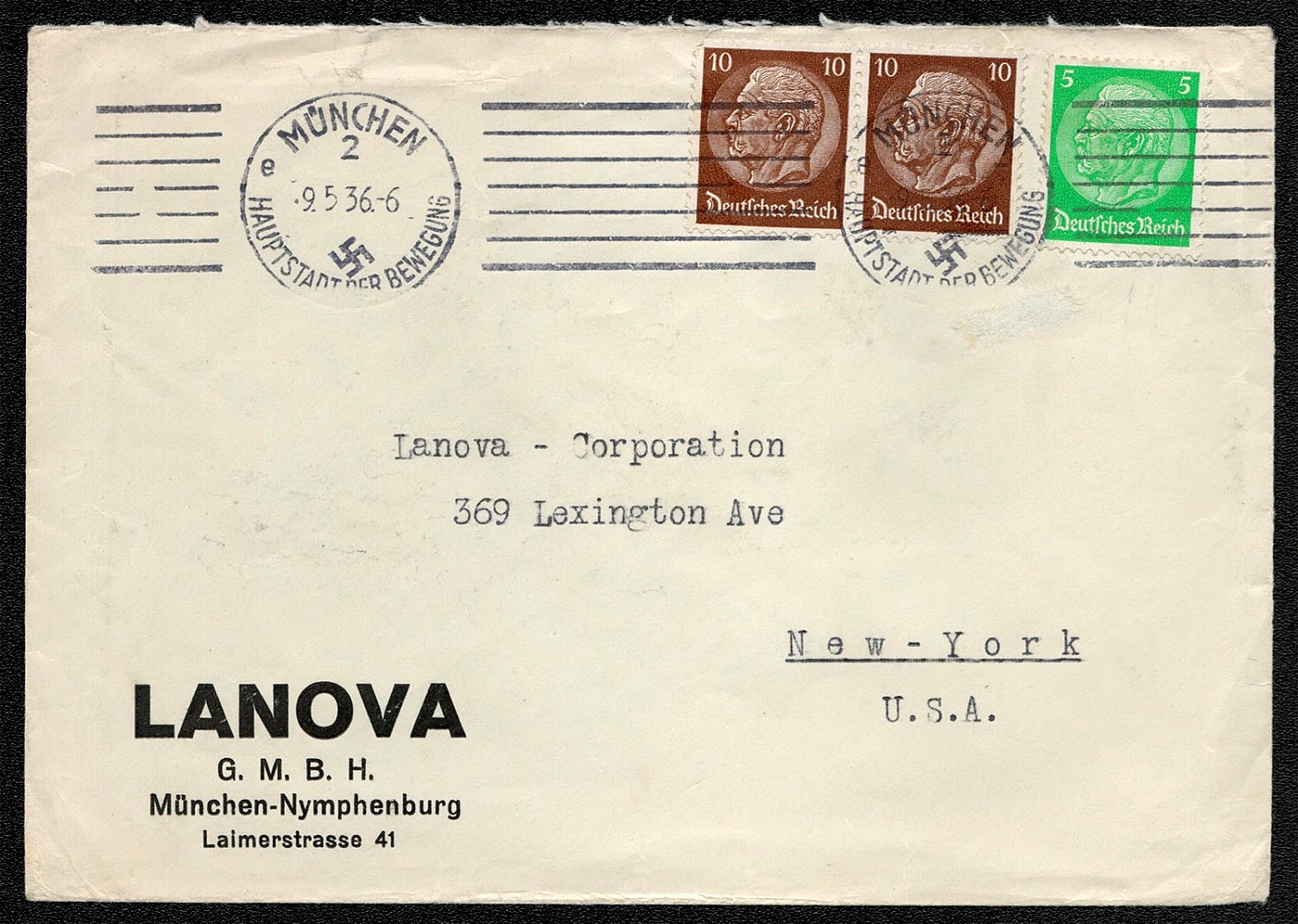
1936 Scott Nos. 418 and 421 postally used on a cover mailed 9 May from Postamt Munich 2 to New York
"Scott Nos. 418 and 421 postally used on a cover mailed 9 May 1936 from Postamt Miinchen 2 to New York. The business of the Lanova Corporation is unknown at this time, but its Miinchen-Nymphenburg headquarters is of interest. Nymphenburg was incorporated into Miinchen in 1900. It is well known for the Schloss or palace, an extensive group of buildings originally erected by elector Ferdinand Maria for his wife in 1663. The large park behind the palace was laid out as an Italian garden in 1671, then in the French style in the 18""' century and from 1804 onwards in the English style. The State Porcelain Factory of Nymphenburg was founded in 1747."
Unsold
599
$10
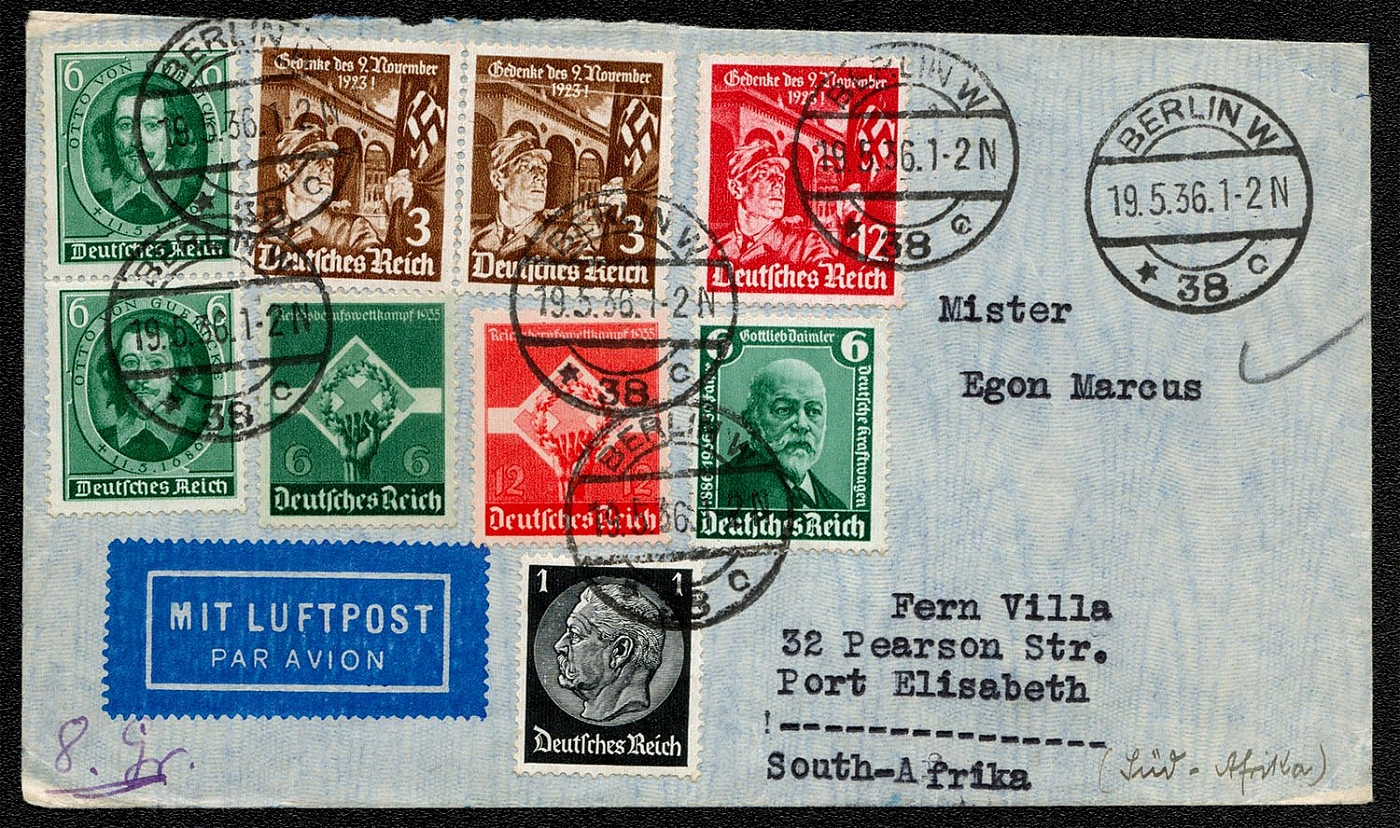
1936 Philatelically inspired, but postally used cover mailed 19 May 1936 from Postamt Berlin W 38 to Port Elisabeth, South Africa
Philatelically inspired, but postally used cover mailed 19 May 1936 from Postamt Berlin W 38 to Port Elisabeth, South Africa. Multiple franking includes Scott Nos. 415, 454-5, 467-8, 470, and 472. The rear of the cover is sealed with a copy of Scott 427 (40 Rpf) cancelled 20 May 1936 at the Frankfurt Flughafen.
Sold for:
$10
600
$10
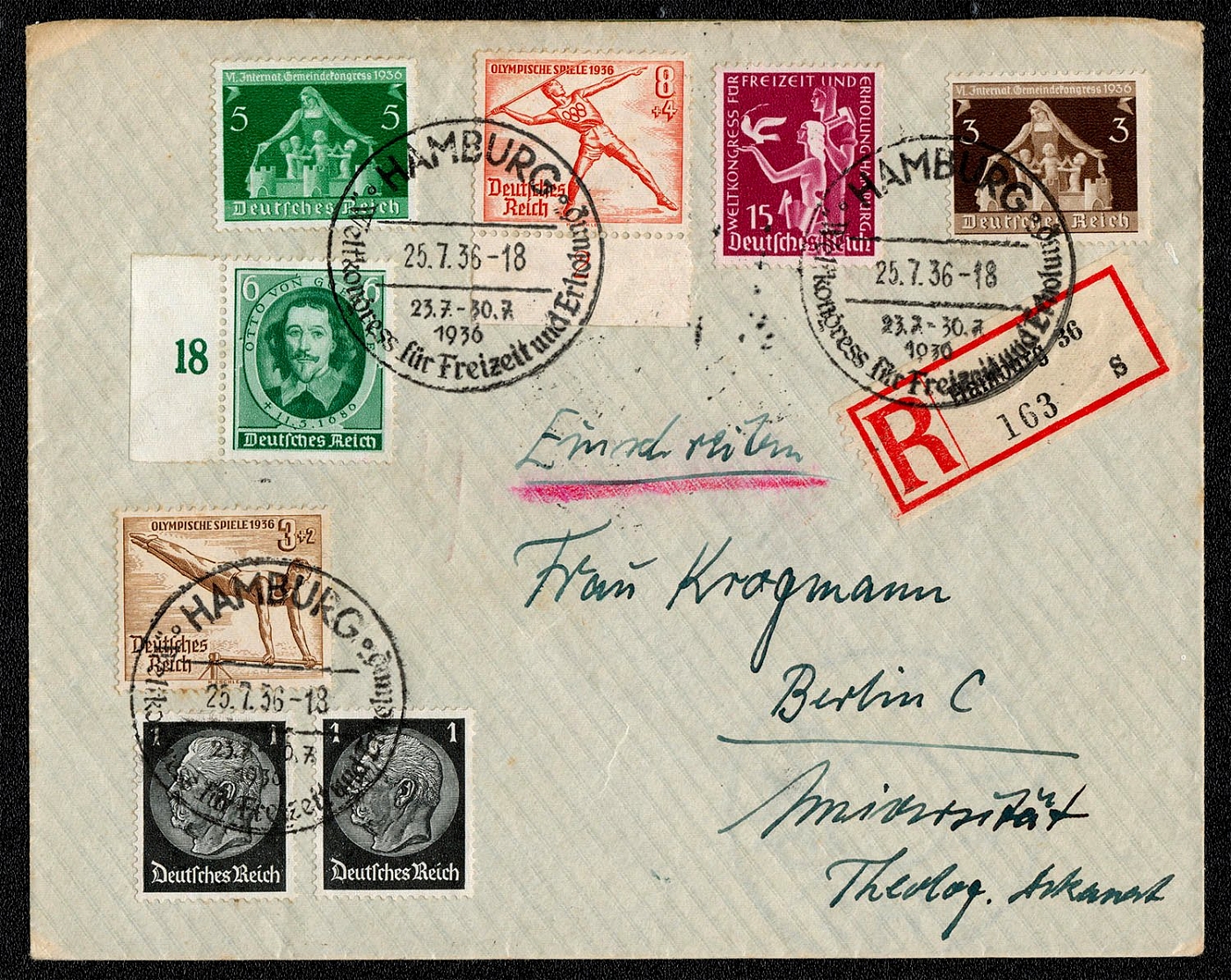
1936 The World Congress for Leisure Time and Recreation in Hamburg registered and postally used cover
Philatelically prepared, but registered and postally used cover franked with the 15 Rpf value (Scott 477) of the World Congress set as well as Scott 415, 472, 473, 474, B82 and B85. Mailed from Hamburg 36 25 July 1936. The special postmark was used in Hamburg from 23 to 30 July 1936, the duration of the World Congress.
Sold for:
$10
601
$30
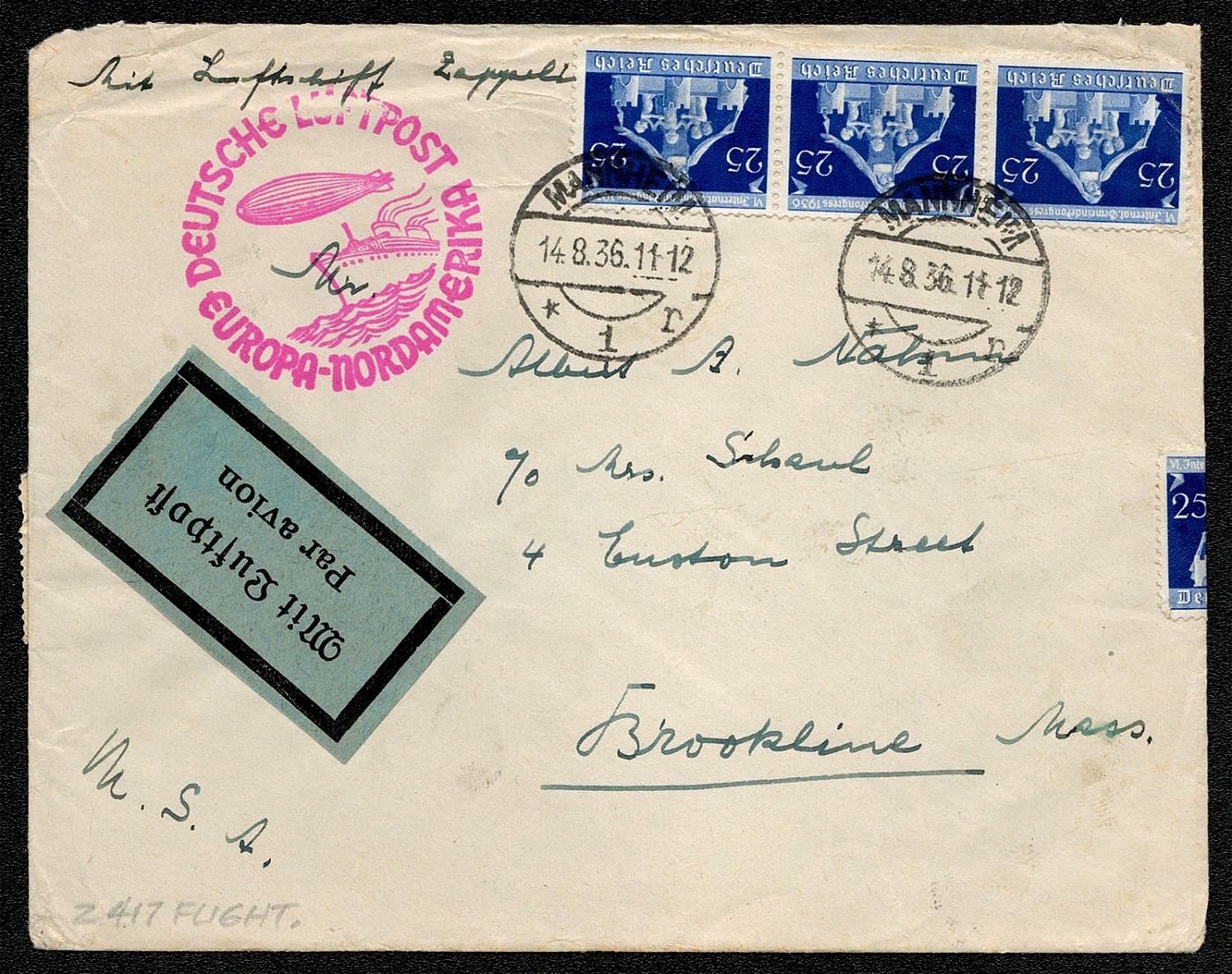
1936 Zeppelin Cover Scott No. 426 in a strip of 3 on a postally used cover cancelled at Mannheim
(GERMAN AIR MAIL EUROPE TO NORTH AMERICA) Scott No. 426 in a strip of 3 on a postally used cover cancelled at Mannheim, 14 August 1936. Unlike the cover dated 6 May 1936, it has no backstanip. Note the handwritten “Mit Luftschiff Hindenburg” and that the handstamped pink cachet differs significantly from the steel die red cachet used on the 6 May 1936 cover. Scott No. 426 in a strip of 6 affixed to the back of this Hindenburg cover was cancelled at Mannheim, 14 August 1936. Not only is this an unusual way of franking, the total postage of 225 pfennig is almost twice the rate for a Hindenburg posting. * * * Mannheim, in the Province of Baden, had a population of 275,132 in the 1930s. It is situated at the confluence of the Neckar and the Rhine Rivers. The principal buildings at the time of posting was the electoral palace containing museums of antiquities and natural history, and the Jesuit Church. Mannheim was the chief commercial center of Baden to which it was annexed in 1802. It was heavily damaged by Allied air raids during World War II.
Sold for:
$30
602
$25
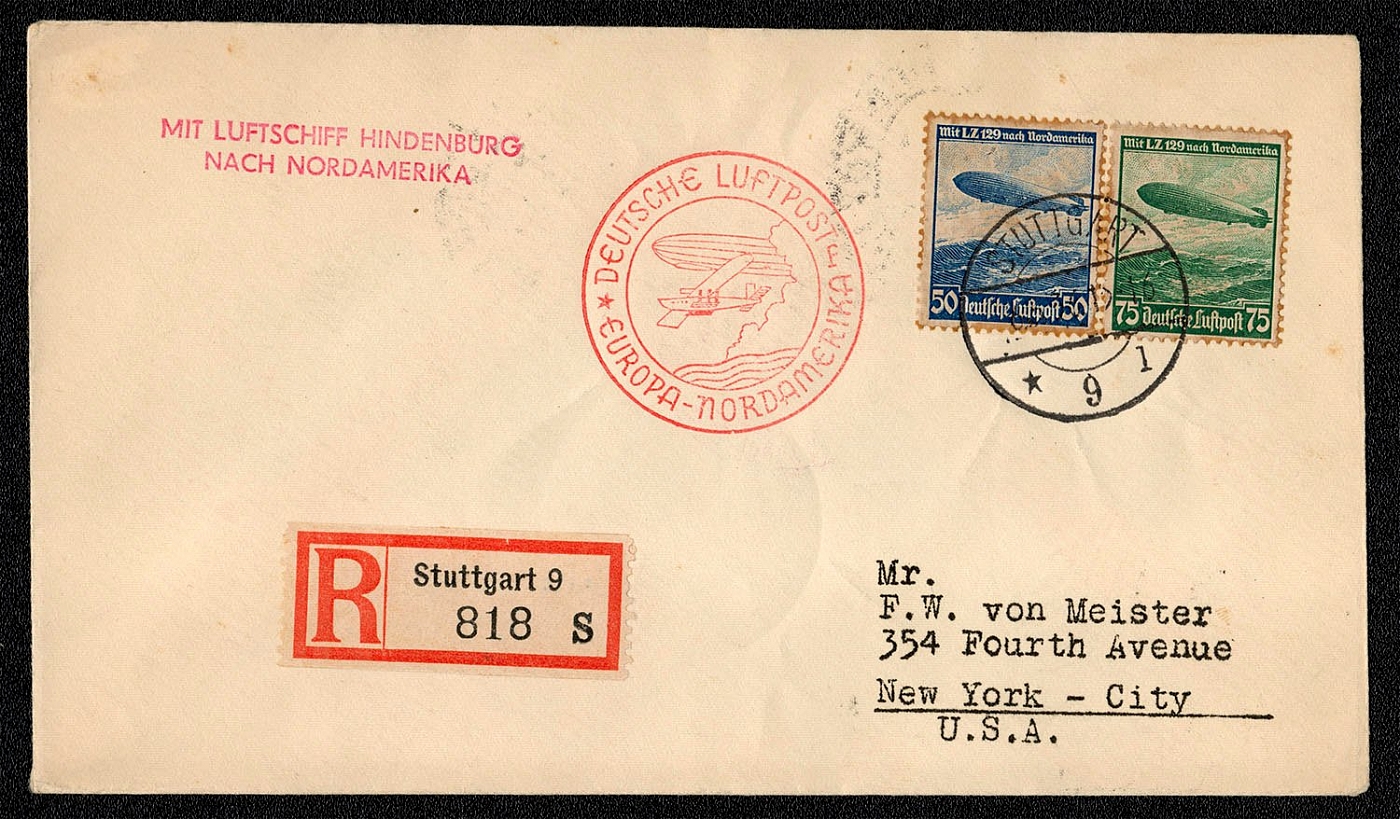
1936 Scott Nos. C57-58, postally used and cancelled at Stuttgart 6 May received in New York on 9 May 1936
MIT LUFTSCHIFF HINDENBURG NACH NORDAMERICA (WITH THE AIRSHIP HINDENBURG BOUND FOR NORTH AMERICA) Scott Nos. C57-58, postally used and cancelled at Stuttgart 6 May 1936. The cover is unopened, therefore it was sent as a philatelic souvenir. It was received in New York on 9 May 1936. For some reason it was backstamped at New York’s Madison Square Station on 11 May 1936. The gum on Nos. C57-58 contains sulphuric acid and tends to damage the stamp. Most collectors of unused stamps prefer to remove it by soaking the stamps. On cover, however, these stamps typically show the foxing or discoloration around the perforated edges. The Hindenburg was the largest rigid airship ever constructed and the victim of a spectacular disaster. It was 804 feet long of conventional Zeppelin airship design, and was first launched at Friedrichshafen in April 1936. It had a maximum speed of 84 miles per hour and a cruising speed of 78 miles per hour. The flight to North America took about 65 hours. The Hindenburg inaugurated commercial air service across the North Atlantic by carrying 1,002 passengers on 10 scheduled round trips between Germany and the United States. Inasmuch as this cover was mailed on 6 May, and air service was inaugurated in April, it is believed to have been carried on one of the earliest flights. The reverse of the cover franked with Scott Nos. C57-58. It was received in New York on 9 May 1936, but for some reason it was later backstamped at the New York Madison Square Station on 11 May 1936. Scott Nos. C57-58 were issued on 19 March 1936 in conunemoration of the North American Flight of the LZ 129. Design by Karl Diebitsch depicting the “Hindenburg” or LZ 129 over the Atlantic Ocean. Perforated 14, 14'/zxl4. Recess printing, watermarked swastikas. Valid until 31 December 1937, # * * On 6 May 1937, while landing at Lakehurst, New Jersey on the first of its scheduled 1937 trans-Atlantic crossings, the hydrogen-inflated Hindenburg burst into flames and was completely destroyed. Thirty-six of the 97 persons aboard were killed. The fire was generally attributed to a discharge of atmospheric electricity in the vicinity of a hydrogen gas leak from the airship, though it has also been speculated that the dirigible was the victim of an anti-Nazi act of sabotage. The Hindenburg disaster inarked the end of the use of rigid airships in commercial transportation.
Sold for:
$25
Lot Number
Price
603
-
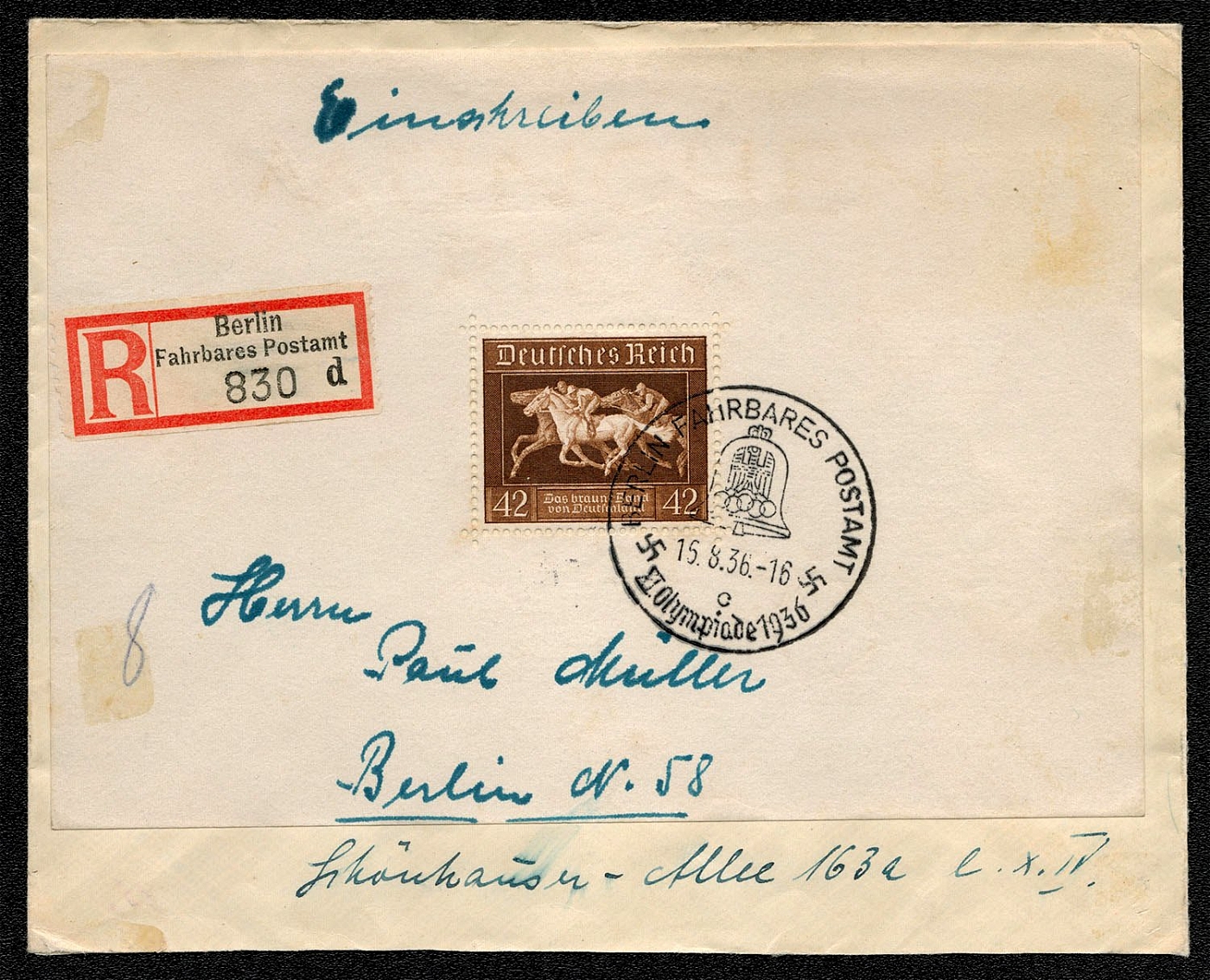
1936 Registered cover franked with Scott B90, with Olympic commemorative cancellation
Registered cover franked with Scott B90, with Olympic commemorative cancellation dated 16 August 1936. The cover was mailed from the Berlin Fahrbares Postamt (Mobil Post Office).
Unsold
604
-
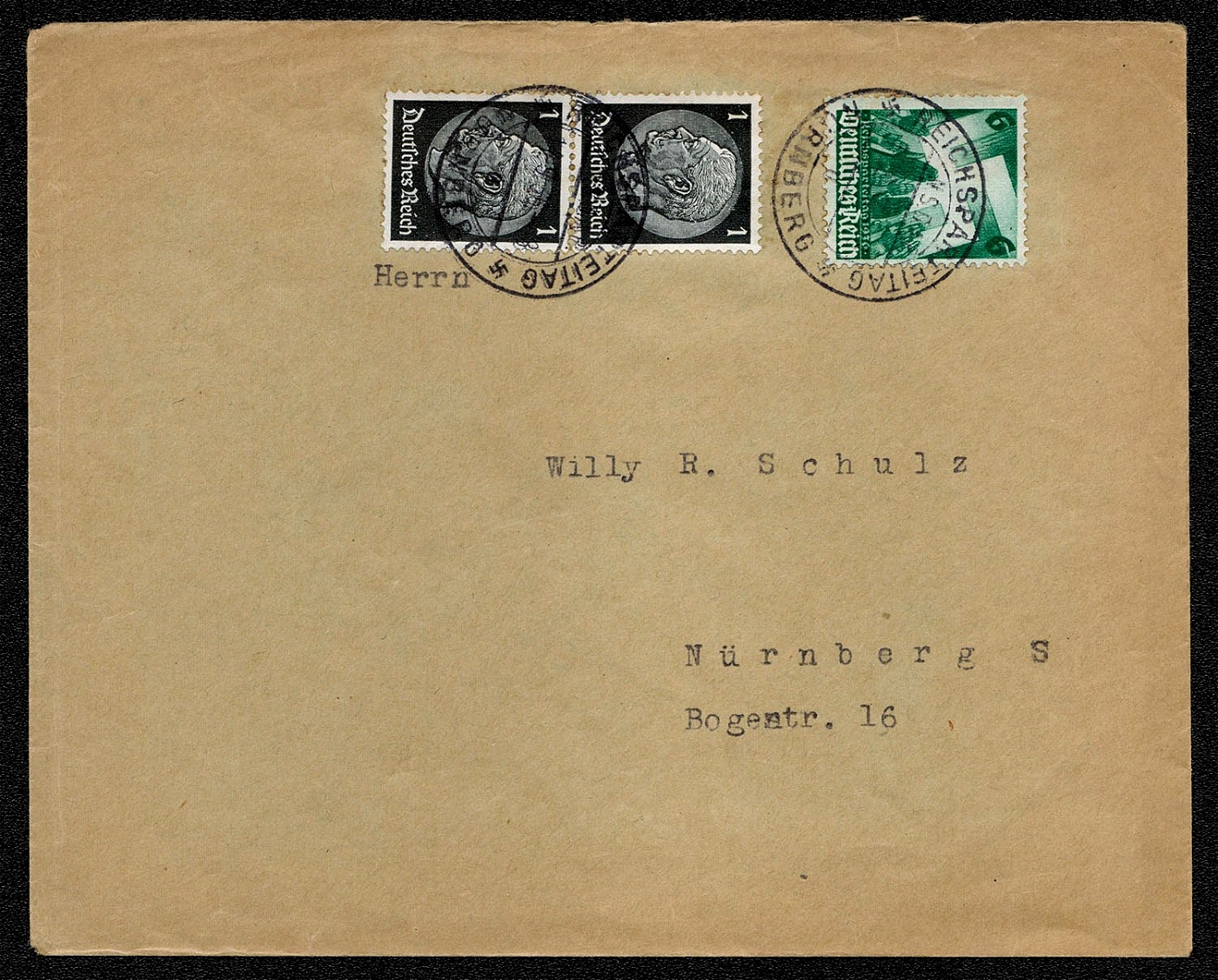
1936 Nuremberg Cover franked with Scott 415 and 479 and posted 11 September
Cover franked with Scott 415 and 479 and posted 11 September 1936. Special commemorative handstamps were used by the main Nurnberg post offices on envelopes and cards presented by philatelists and souvenir hunters. The handstamp was the same as that used in 1935 except an identifying letter appears below the date bridge. Twenty-four different handstamps were allocated, but only a few receiving post offices have been identified. However, the above cover is an “o” and is known to have been used at Postamt Nurnberg 2.
Unsold
605
$5
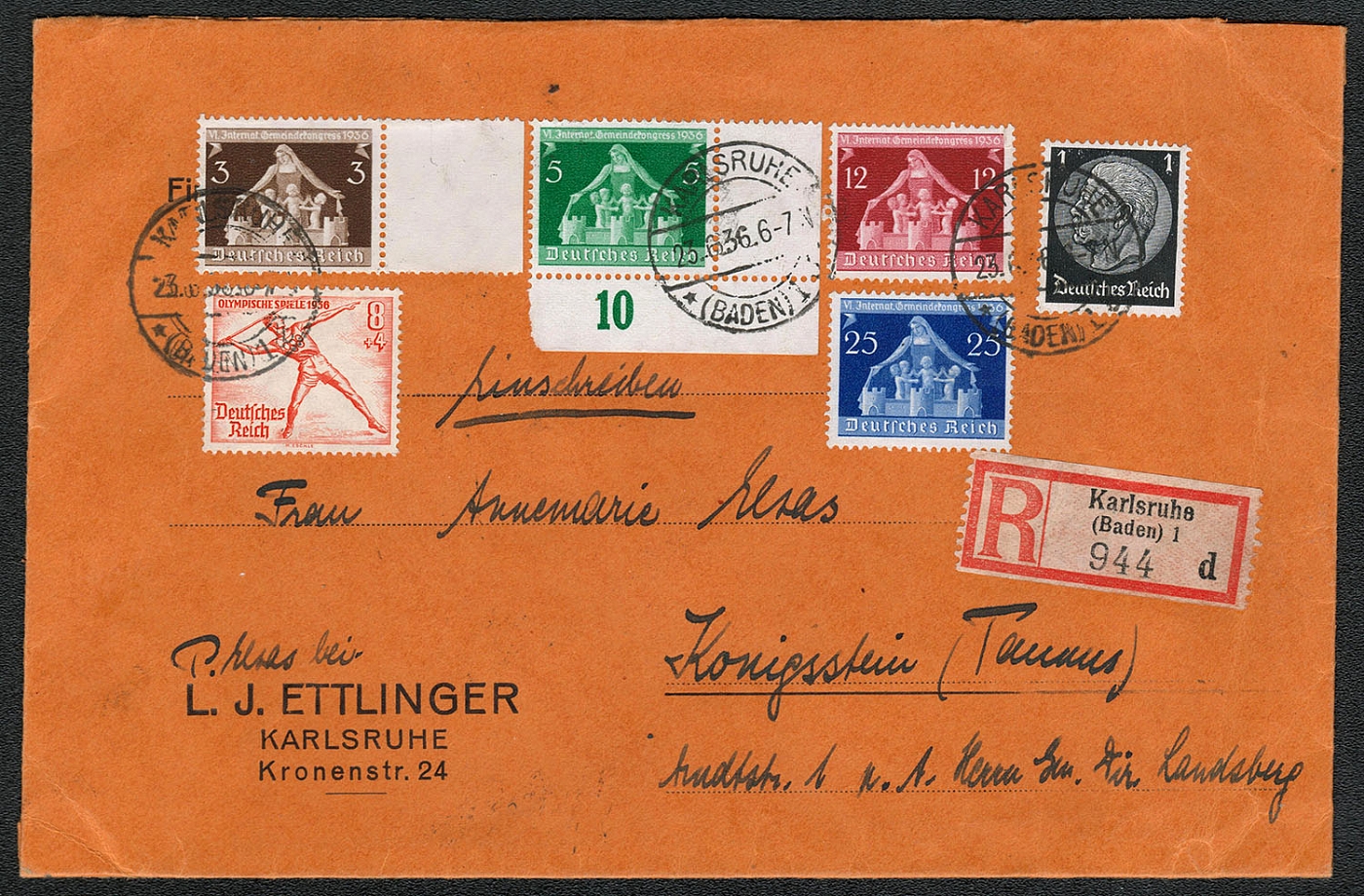
1936 Registered cover mixed franking Karlsruhe - Konigstein
1936 Registered cover mixed franking Karlsruhe - Konigstein
Sold for:
$5
606
$35
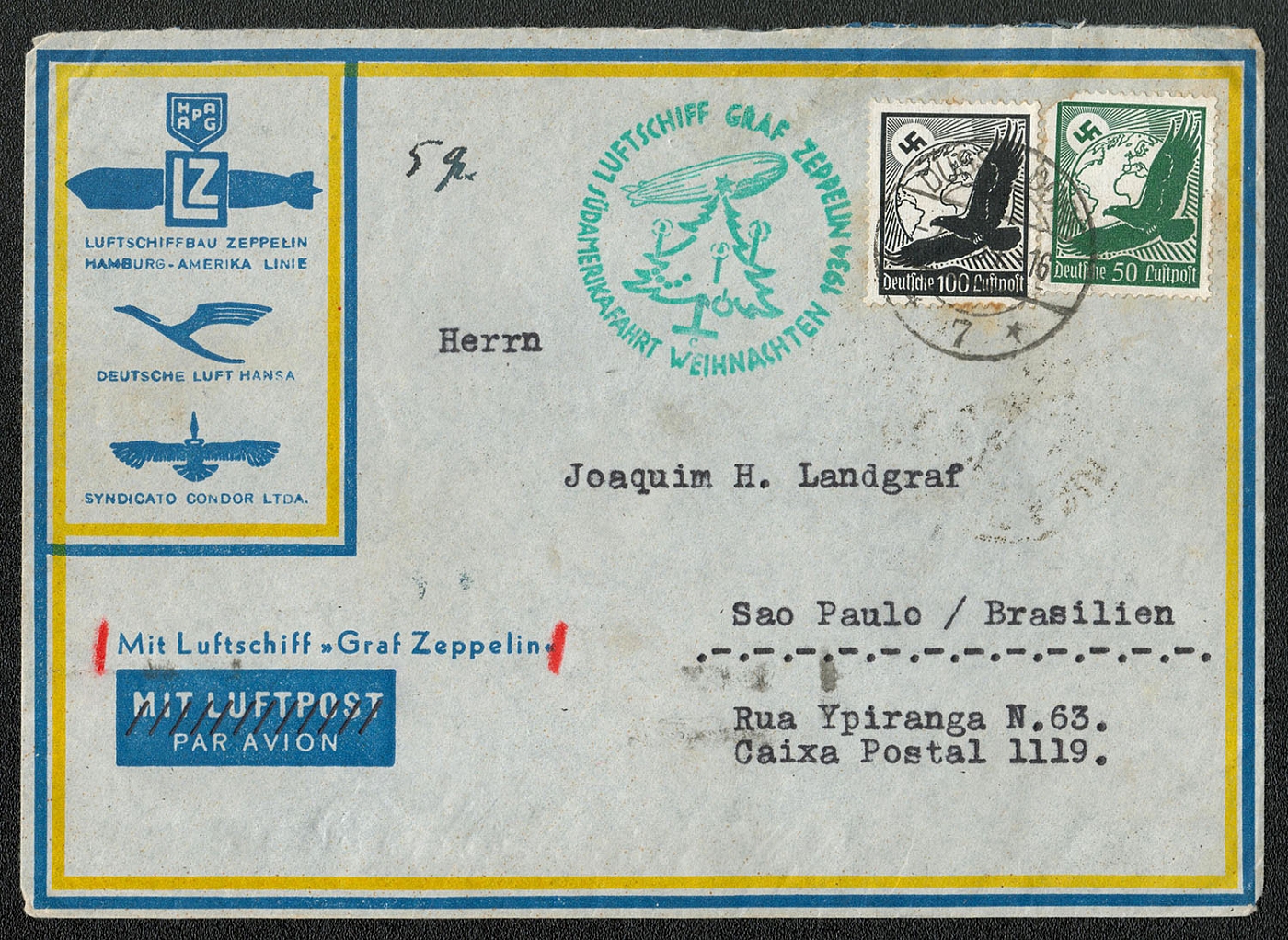
607
$10
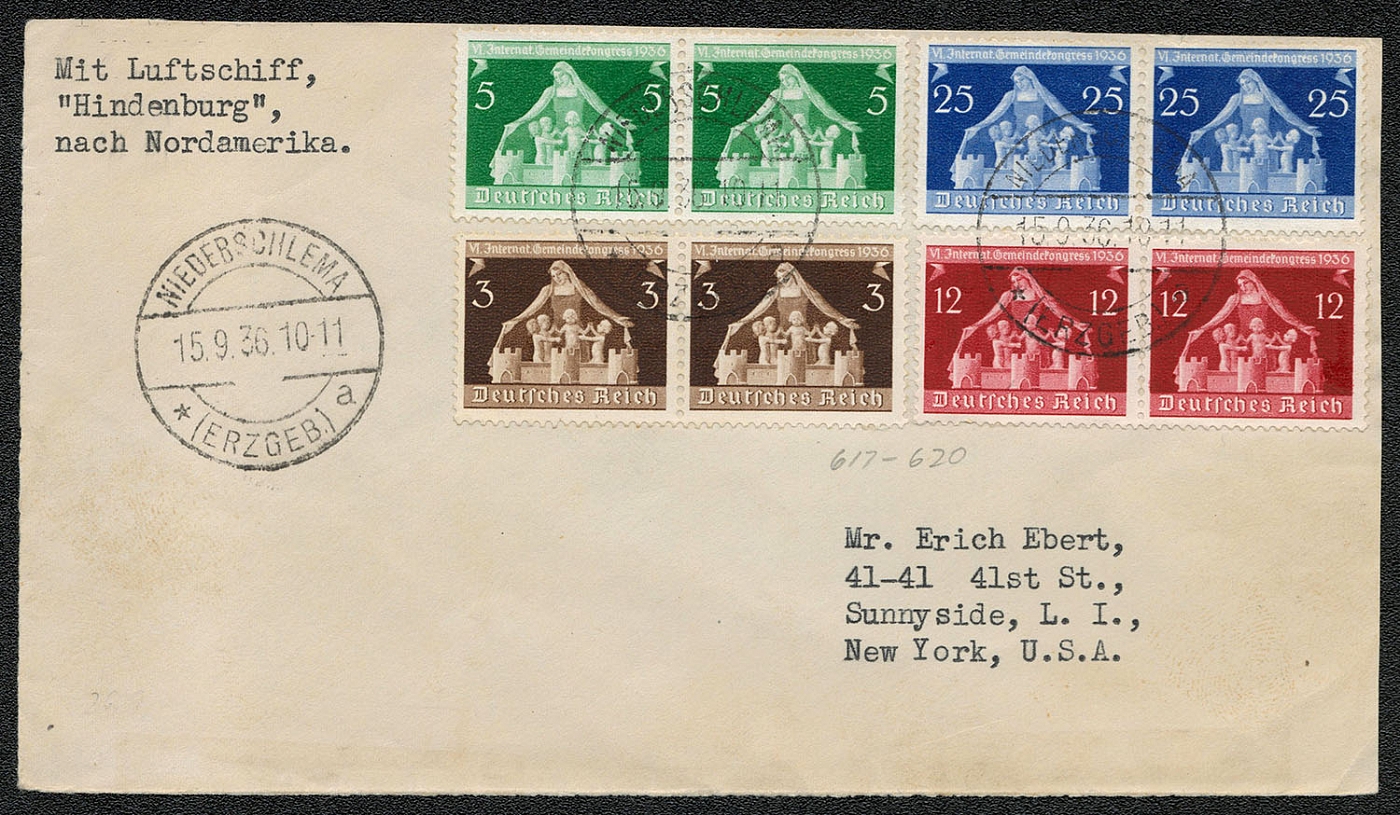
1936 Airmail with full set franking Aue-Bad Schlema - New York
1936 Airmail cover with full set franking Aue-Bad Schlema - New York
Sold for:
$10
608
$50

1936 Zeppelin Hindenburg cover to North America
1936 Zeppelin Hindenburg cover to North America
Sold for:
$50
609
-
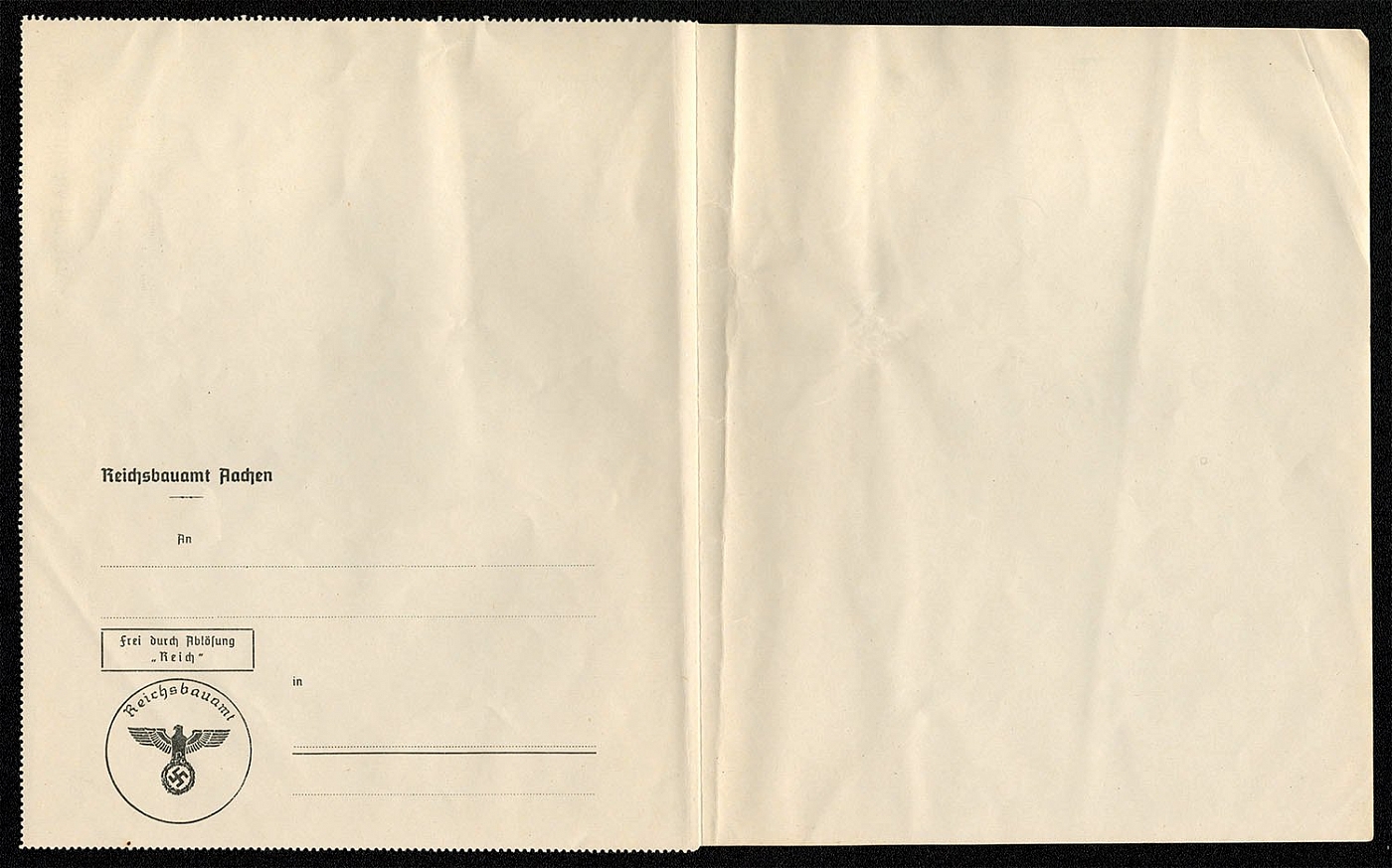
1937 Official stationary with free franking throughout the Reich
Official stationary with free franking throughout the Reich. The corner card indicates it was for the use of the Aachen Office of Construction. Circa 1937.
Unsold
610
-
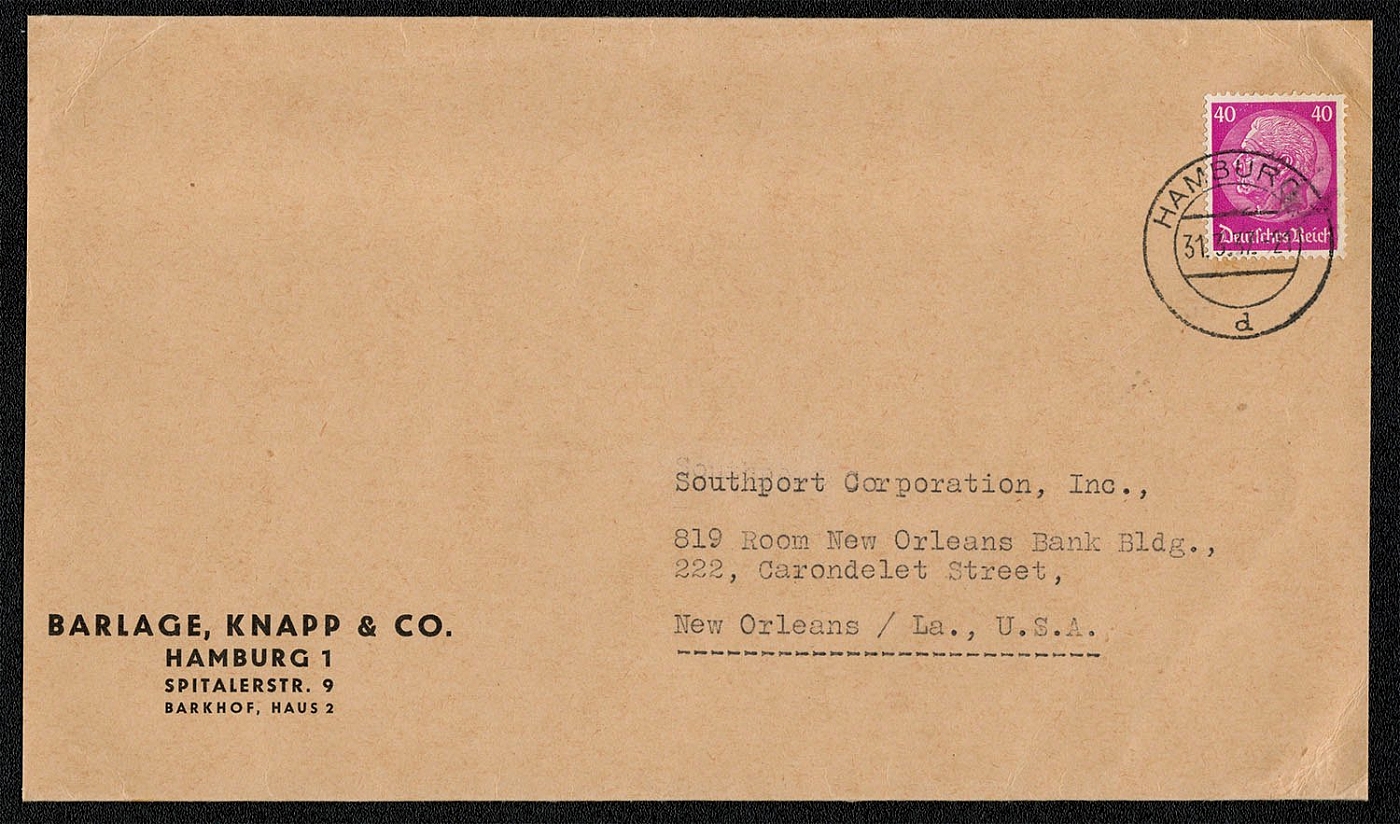
1937 Scott 427 postmarked Hamburg 1 to New Orleans 3 March 1937
Scott 427 postmarked Hamburg 1 to New Orleans 31 March 1937
Unsold
611
$25
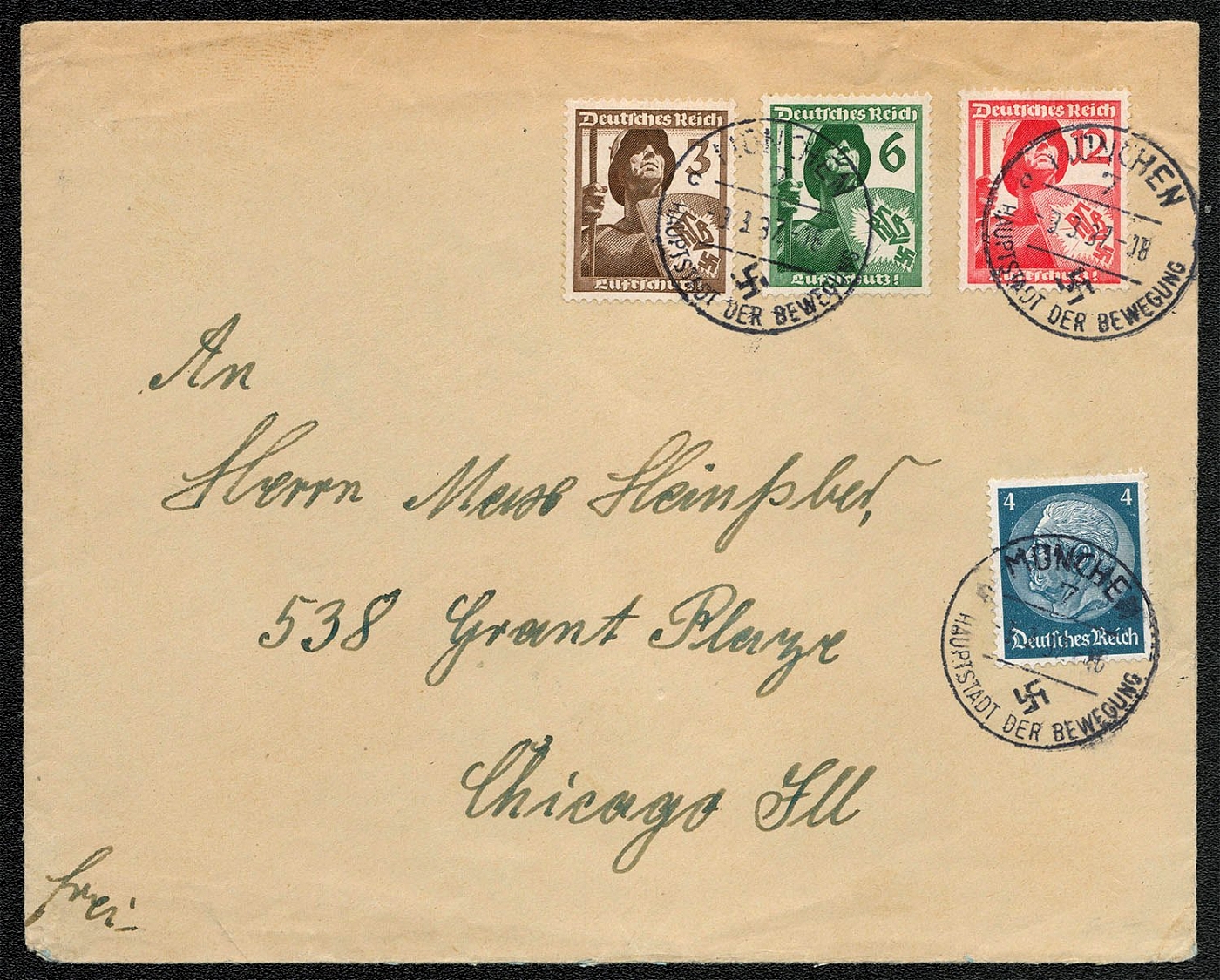
1937 First Day Cover 3 March 1937 Civil Air Defense League Munich
First Day Cover 3 March 1937 Civil Air Defense League Munich This cover is additionally franked with Scott No. 417 (4 pfg) to make up the international rate from Germany to the United States (21 pfg). The Reichsluftschutzbund, originally a branch of the N.S.D.A.P., was founded in 1933. All officials wore the special uniform of the league. This organization functioned similarly to the military, its officers holding ranks and receiving promotions similar to those of the army. Enlistment was voluntary. During the war years the RLB had the status of a semiofficial police force. Many of its recruits and officers were women.
Sold for:
$25
612
-
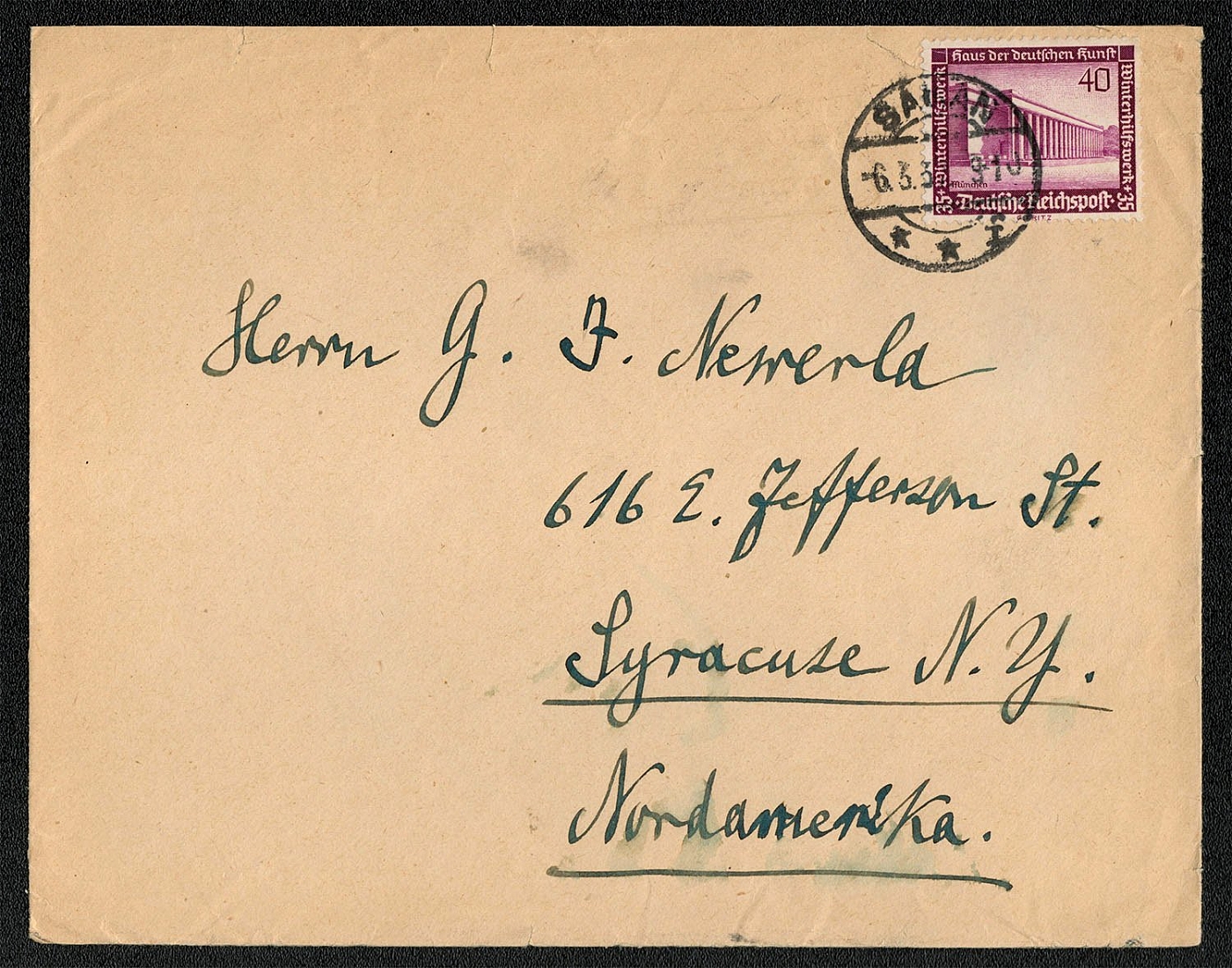
1937 Cover franked with Scott 101 paying the rate to the U.S. Posted in Sagan (Prussia)
Cover franked with Scott 101 paying the rate to the U.S. Posted in Sagan (Prussia) 6 March 1937. § Sagan, 118 miles east of Berlin on the River Bober, had a population of 18,000 in the mid-1930s. Cloth factories were the most prominent industry. Historically, it boasted a Schloss of the Dukes of Tallyrand-Sagan, begun in 1627. It was also the site of a prison camp in WWII.
Unsold
613
$25
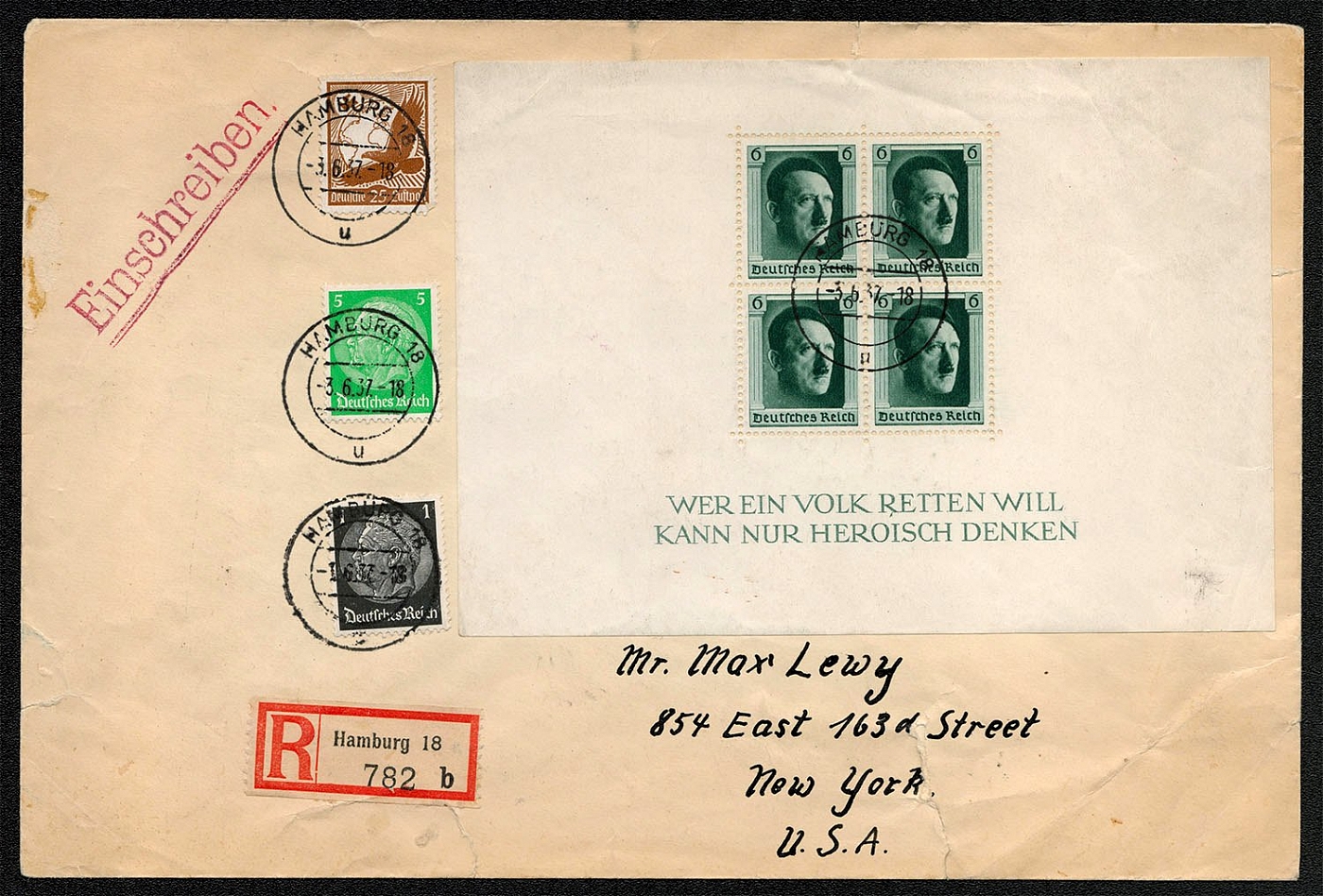
1937 Registered cover to New York franked with Scott Nos. 415, 418, B102 and C50. Posted in Hamburg, 3 June
Registered mail to New York franked with Scott Nos. 415, 418, B102 and C50. Posted in Hamburg, 3 June 1937.
Sold for:
$25
614
$25
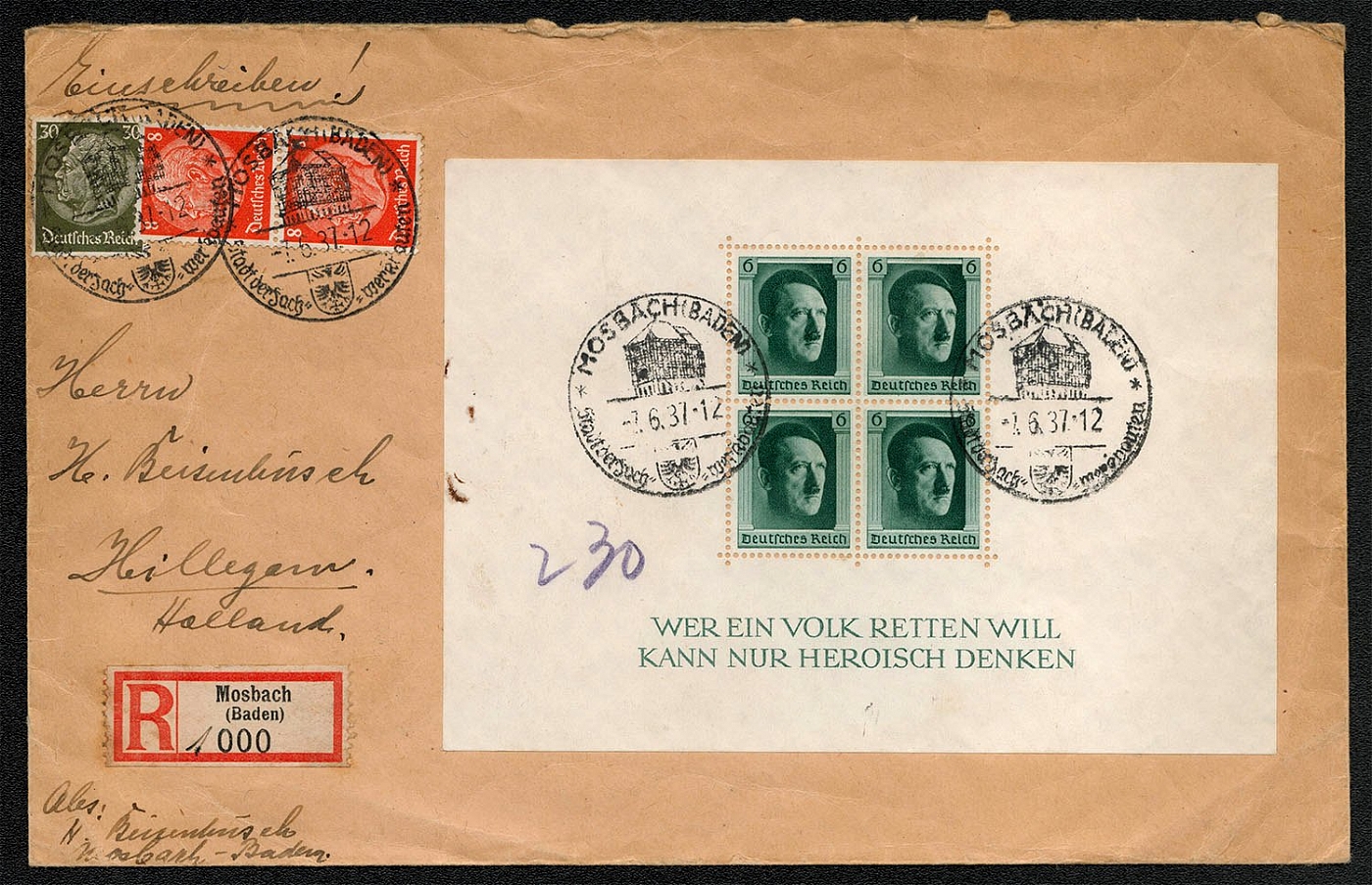
1937 Registered cover to Holland franked with Scott Nos. 420, 426 and B102. Posted in Mosbach (Baden), 7 June
1937 Registered cover to Holland franked with Scott Nos. 420, 426 and B102. Posted in Mosbach (Baden), 7 June
Sold for:
$25
615
$10
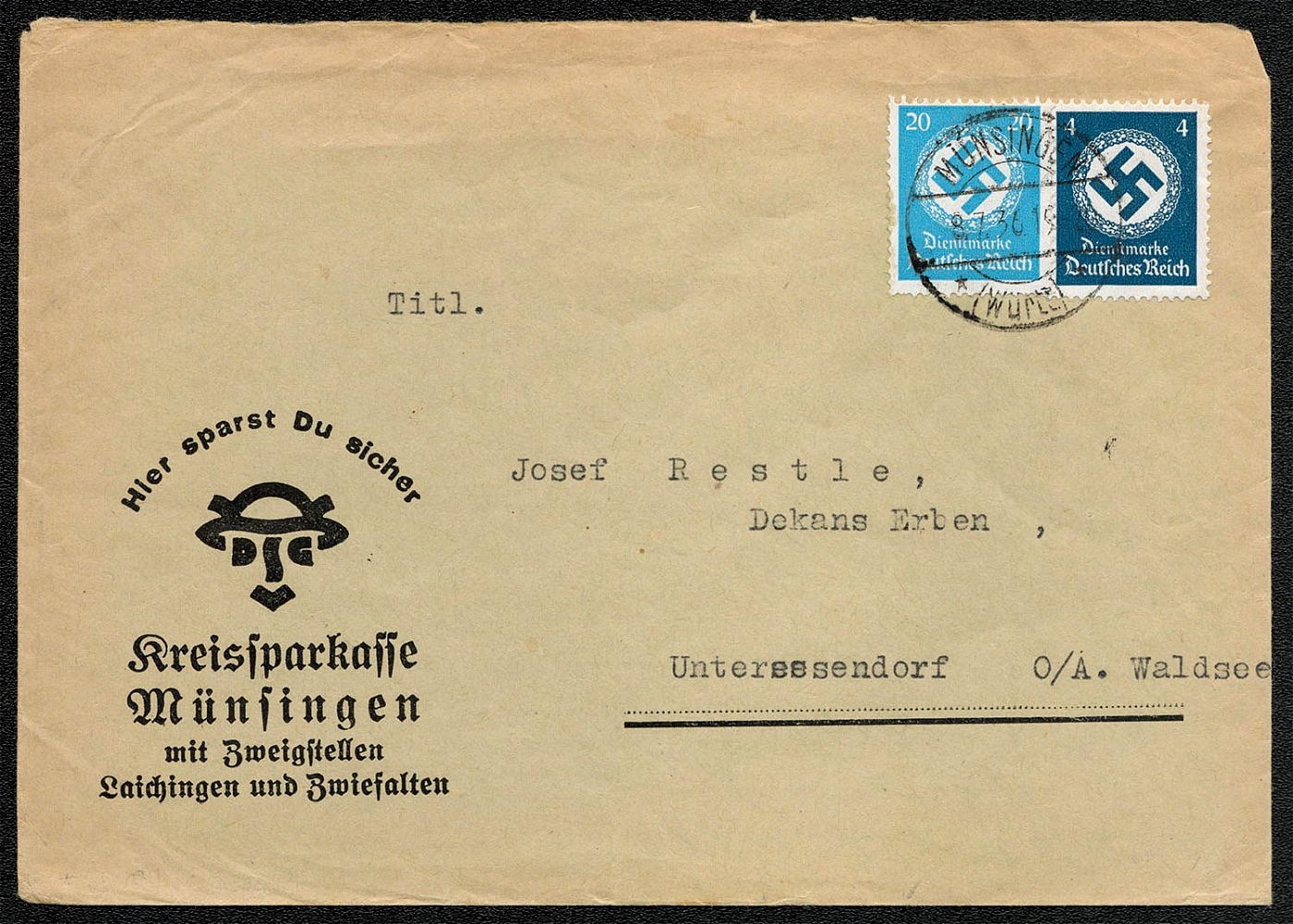
1937 Official cover franked with Scott 081 and 088 from the District Savings Bank of Munsingen
Official mailing franked with Scott 081 and 088 from the District Savings Bank of Munsingen with branch offices in the towns of Laichingen and Zweifalten. The cover was posted in Munsingen on 8 July 1936, and addressed to Josef Restle, the Dean of Inheritance, in the town of Waldsee. The motto above the caricature in the corner card reads: Your savings are safe here.
Sold for:
$10
616
$10
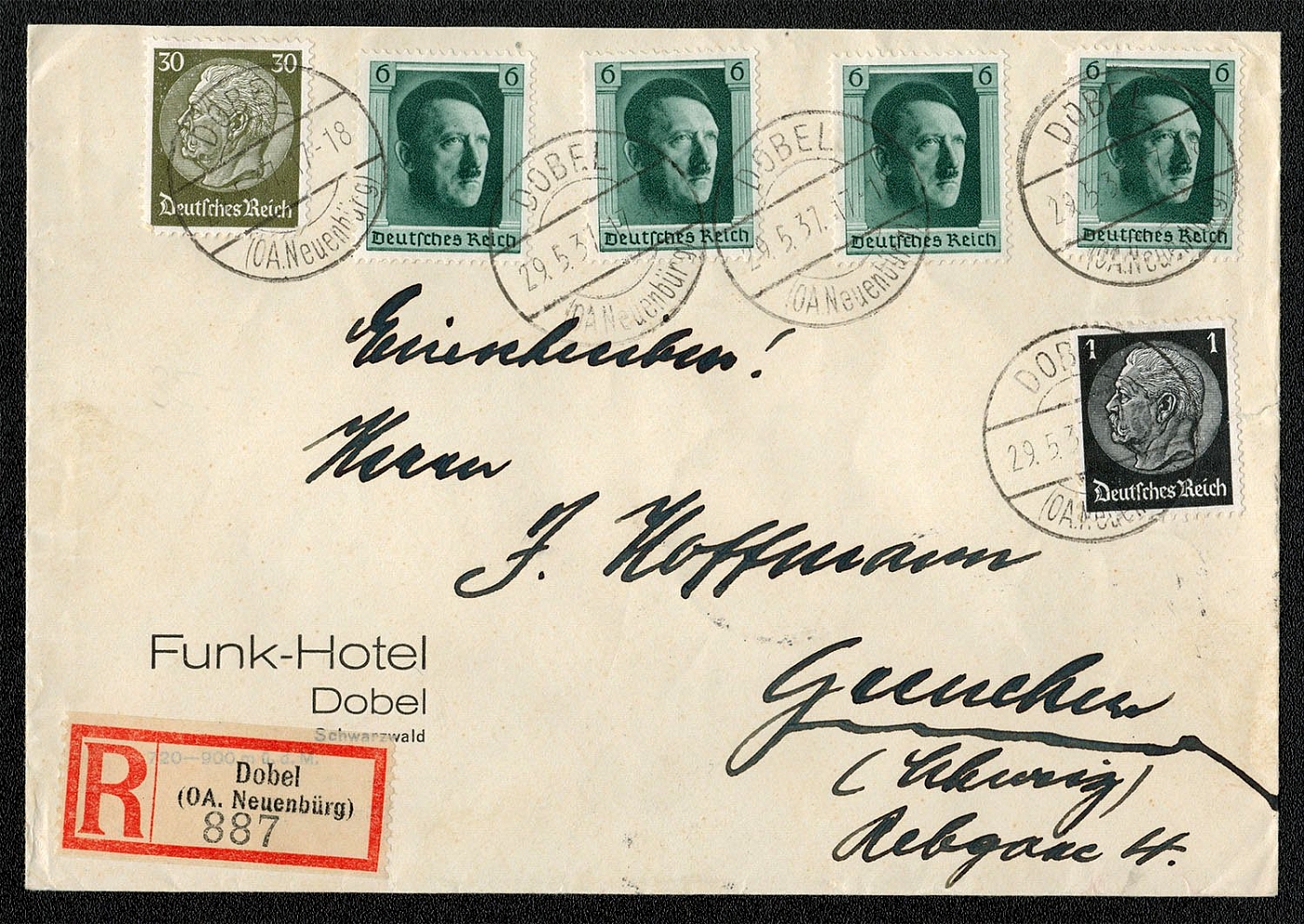
1937 registered cover franked with multiple copies of Sc B102a, plus Sc 415 and 426, mailed in Dobel
A philatelically prepared, postally used, registered cover franked with multiple copies of Sc B102a, plus Sc 415 and 426, mailed in Dobel (OA. Neuenburg) on 29 May 1937 to Grenchen, Switzerland. Dobel is a small town in southern Germany approximately 30 miles west of Stuttgart
Sold for:
$10
617
-
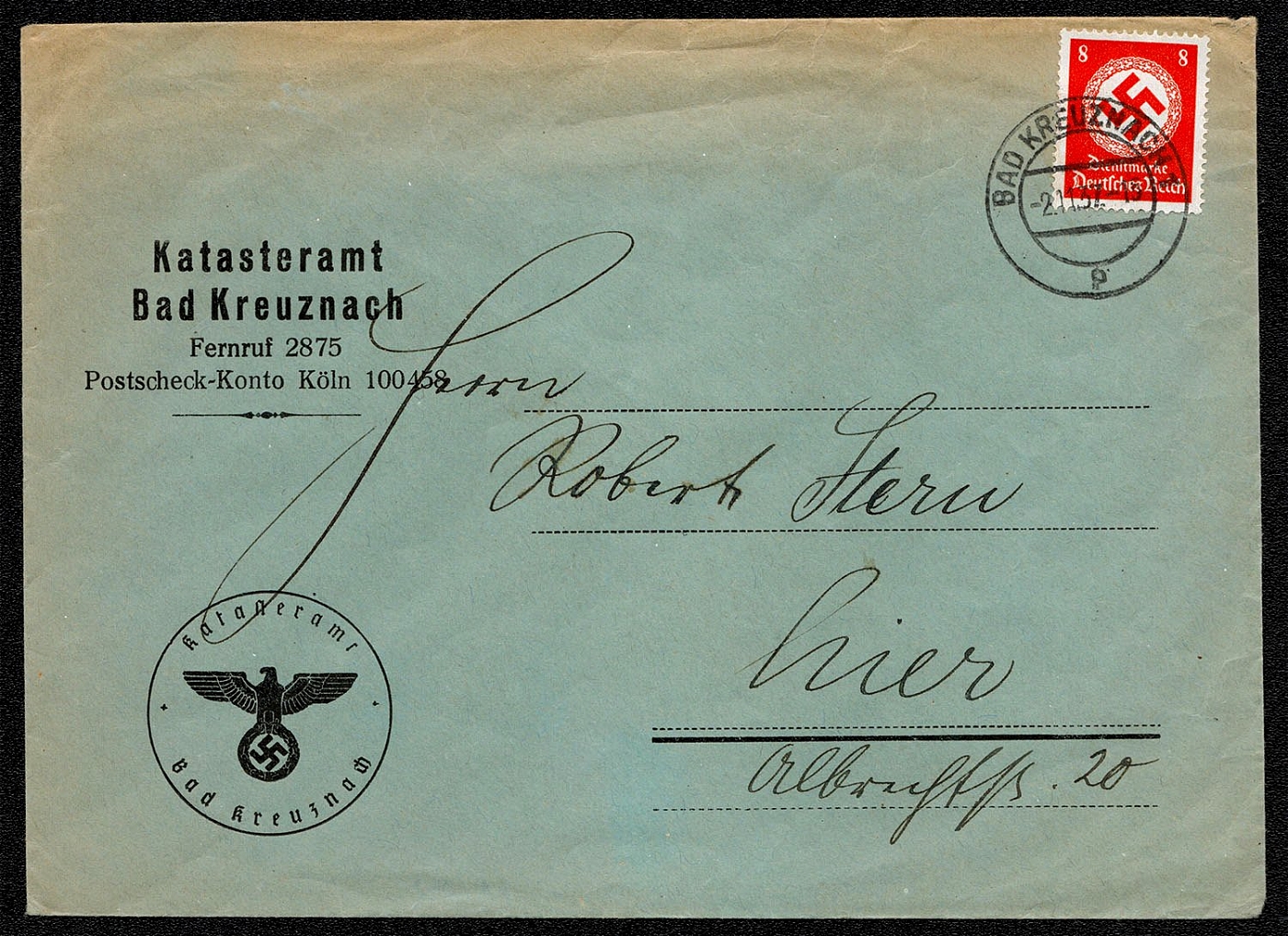
1937 Official cover franked with Scott 084 from the fiatatftcrnnit (Land Registry Office) of Bad Kreuznach
(The Official Stamp Issue of 18 January 1934) Official mailing franked with Scott 084 from the fiatatftcrnnit (Land Registry Office) of Bad Kreuznach on 2 November 1937. Bad Kreuznach, a town of approximately 30,000 inhabitants in 1936 had a considerable trade in wine, tobacco, and tanneries. It lies on both sides to the Nahe River. It was part of the demilitarized Rhineland zone and occupied by French troops (Rheinlandbesetzung) following the Versailles Treaty. Nevertheless, on 7 March 1936 a division of German troops (joyously greeted by the population) crossed the Rhine near Koln in violation of the treaty. The Western powers only reacted with a special session of the Council of the League of Nations and a condemnation of the German action. Italy remained wholly on the sidelines because of its own involvement in the war in Abyssinia. Hitler carried out the surprise move, which he later called “the most tense period of my life,” like a gambler, entirely on his own initiative and against the judgement of his military and political advisers. Aware of the army’s totally inadequate level of rearmament, he gave the order to immediately withdraw the troops at the first sign of “contact with the enemy.”
Unsold
618
$5
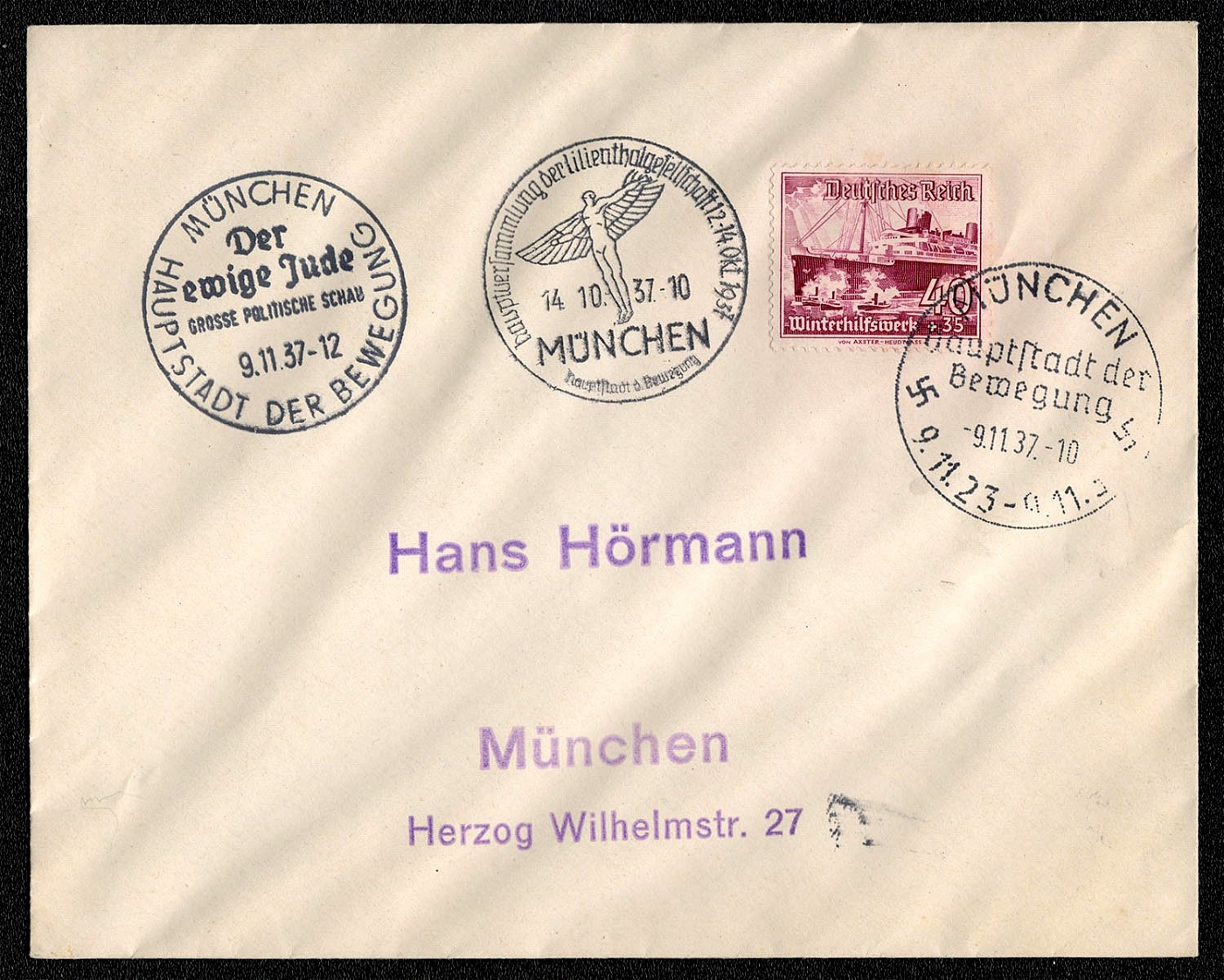
1937 A philatelically prepared cover franked with Sc В115 exhibiting three different Munich special cancellations
A philatelically prepared cover franked with Sc В115 exhibiting three different Munchen special cancellations. Only one, however, ties the stamp to the cover: Posted on 9 November 1937, it marked the fourteenth anniversary of the Putsch, and Munchen as the Capital City of the Movement. § An earlier cancellation, dated 14 October 1937, depicts a winged man in flight. Although not tied to any franking, it commemorates the The General Meeting of the Lilienthal Society honored this early glider experimenter who published a classic work on the flight of birds as a foundation for aircraft in 1889. Otto Lilienthal was killed in 1896 while trying to fly a glider with flapping wing tips. § The third cancellation (dated 9 November 1937) is a “free-floating” commemoration of CROSSE POUTISCIIE SCHAU The Eternal Jew Political Exhibition vilifying the Jewish people opened on 8 November 1937 in the Library of the German Museum in Miinchen. It closed on 31 January 1938.
Sold for:
$5
619
-
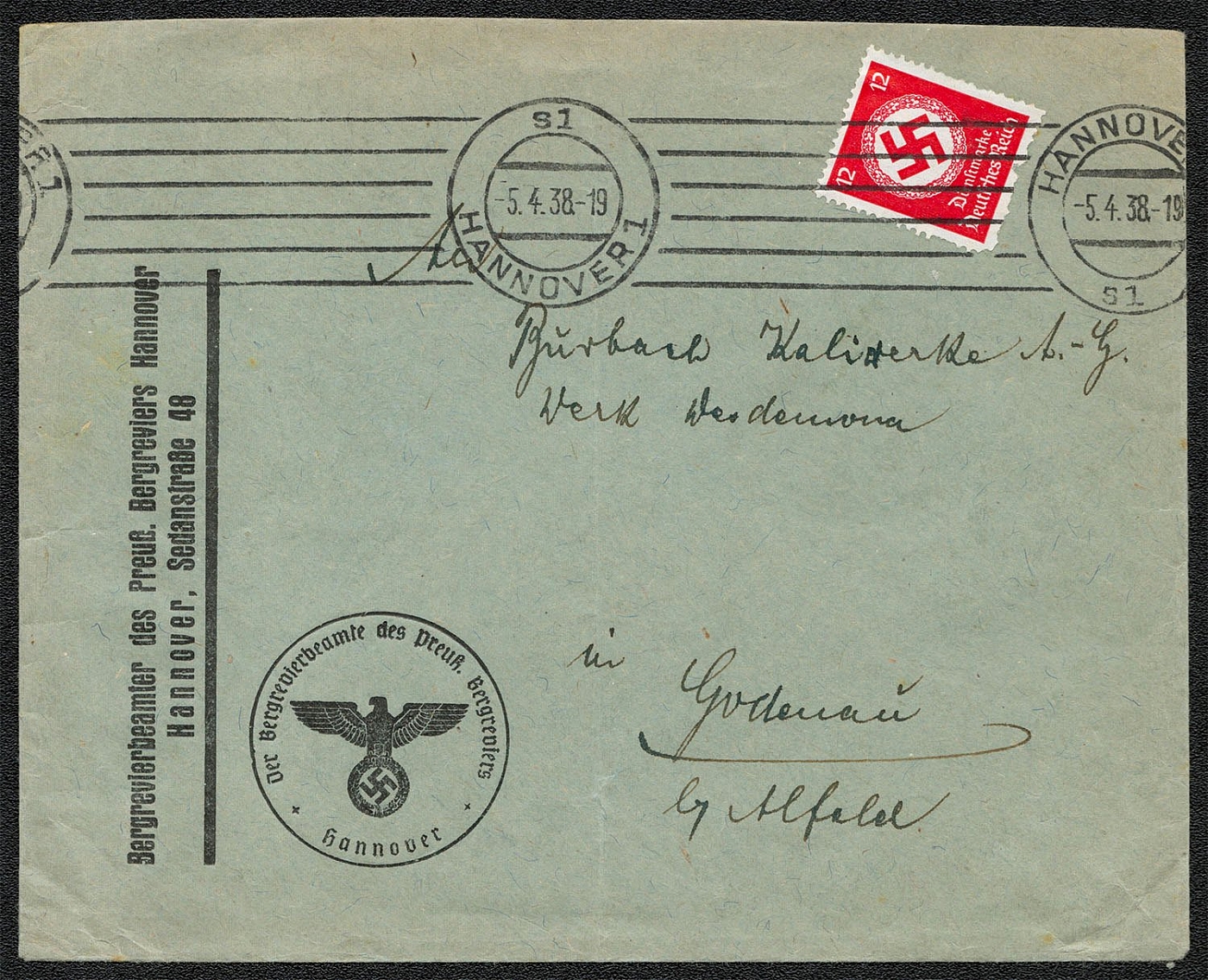
1938 Official cover franked with Sc 086 sent from the Prussian Mountain District Office in Hannover through Postamt Hannover
Official mail franked with Sc 086 sent from the Prussian Mountain District Office in Hannover through Postamt Hannover 7 on 5 April 1938 to the Werk Desdemona in Godenau (?). Note the strip cancellation (Rollenmechanismus), a double circle with a date bridge, reverses the city name from the top to the bottom as it was rolled across the cover.
Unsold
620
$10
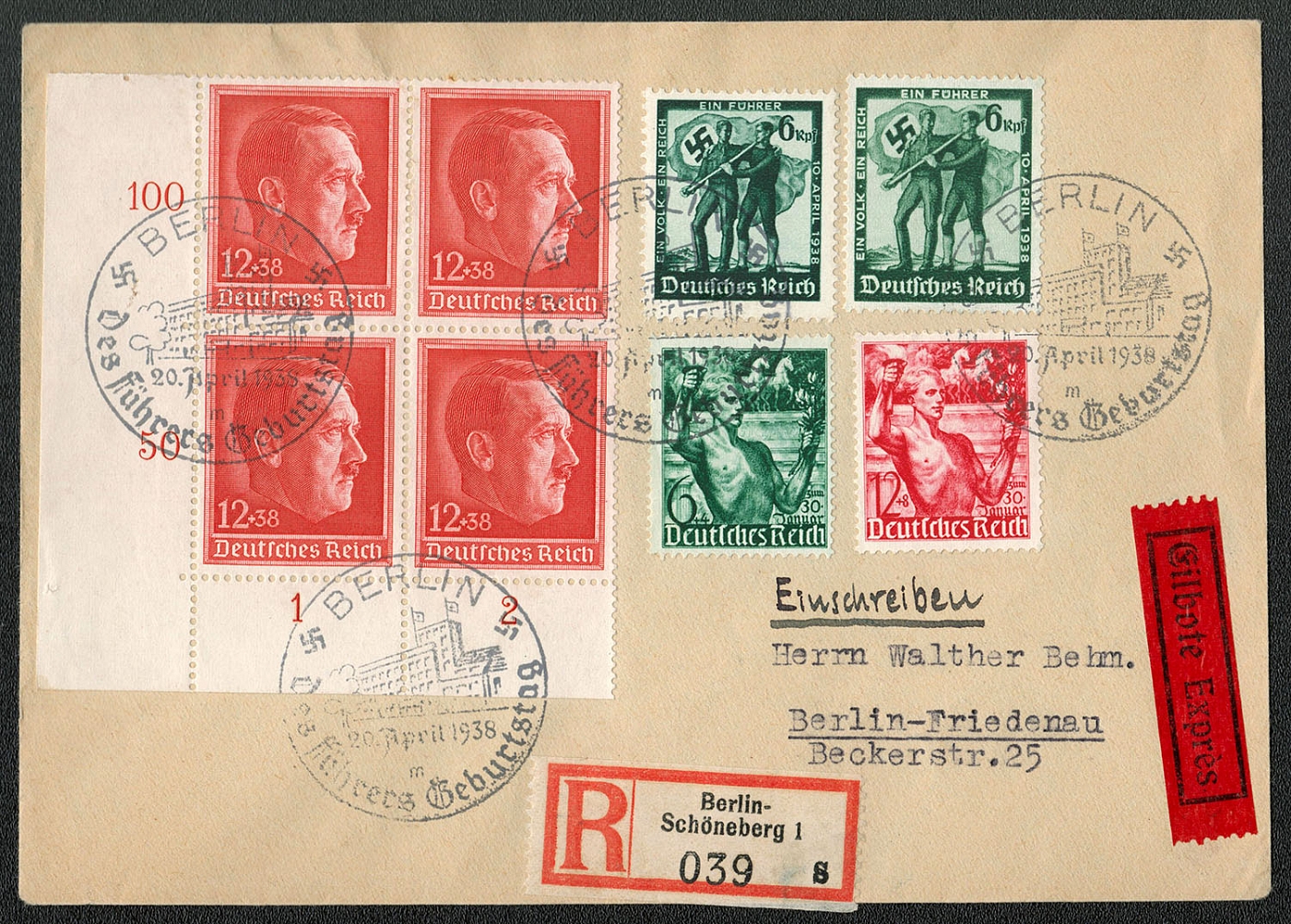
1938 Berlin Multy franking registered cover with Special postmark
1938 Berlin Multy franking registered cover with Special postmark
Sold for:
$10
621
$25
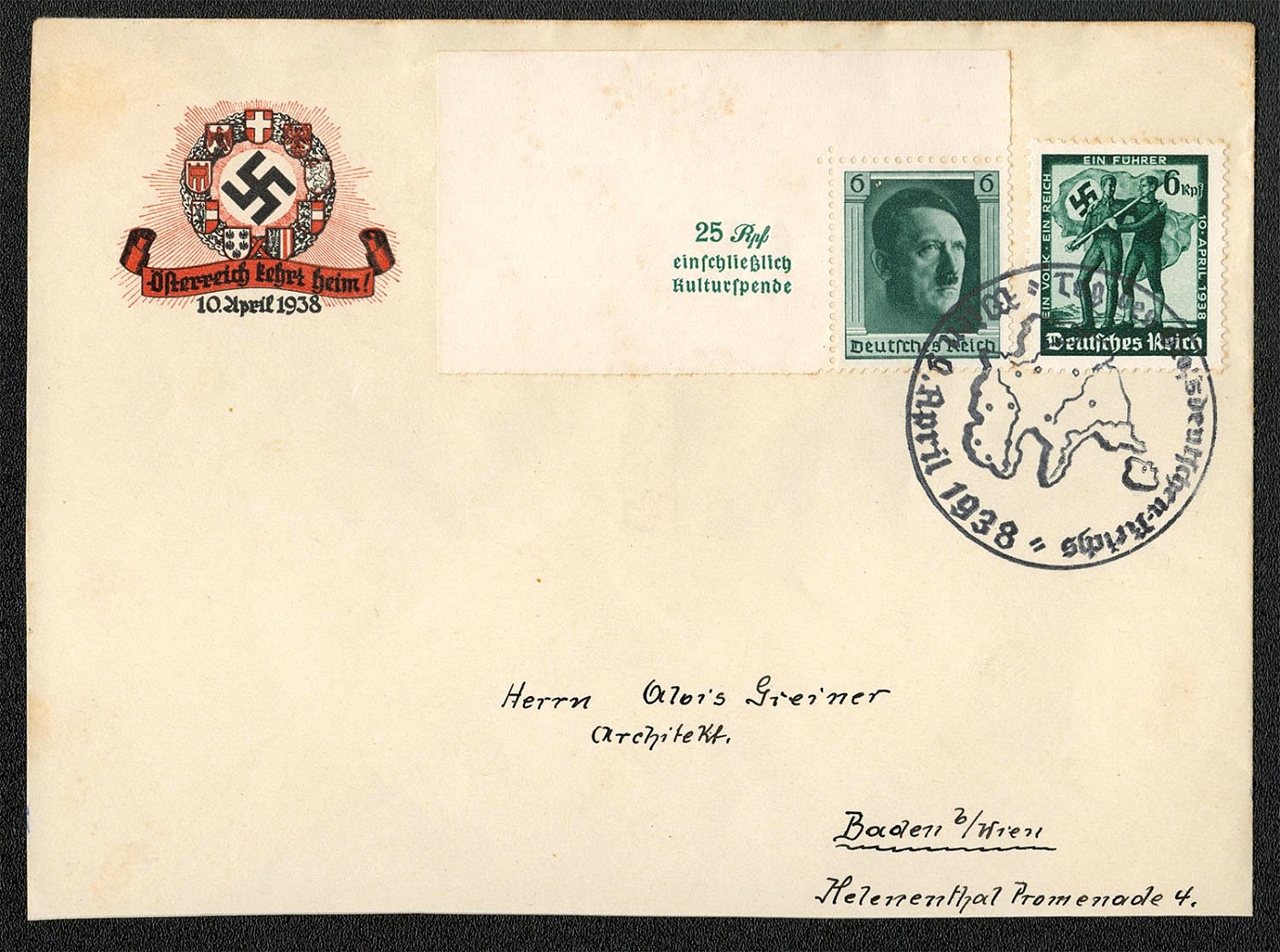
1938 Publicity cover exhorting Austria to return home franked with Scott В 102a and 485
Publicity cover exhorting Austria to return home franked with Scott В 102a and 485 posted: 9 April 1938 Wien. The commemorative cancel bcc
Sold for:
$25
622
$10
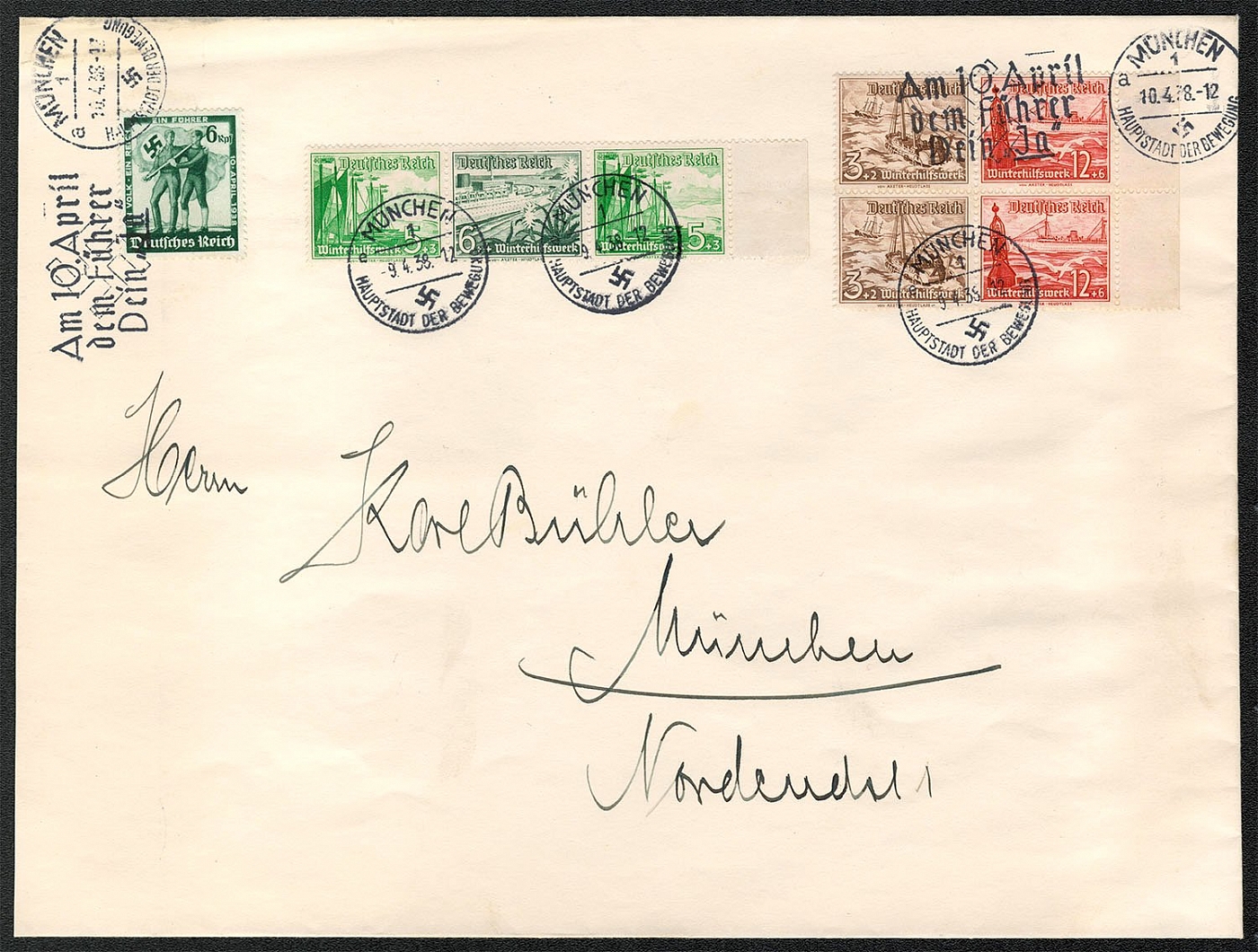
1938 Munich Cover franked with strip and block from Ships set
1938 Munich Cover franked with strip and block from Ships set
Sold for:
$10
623
-
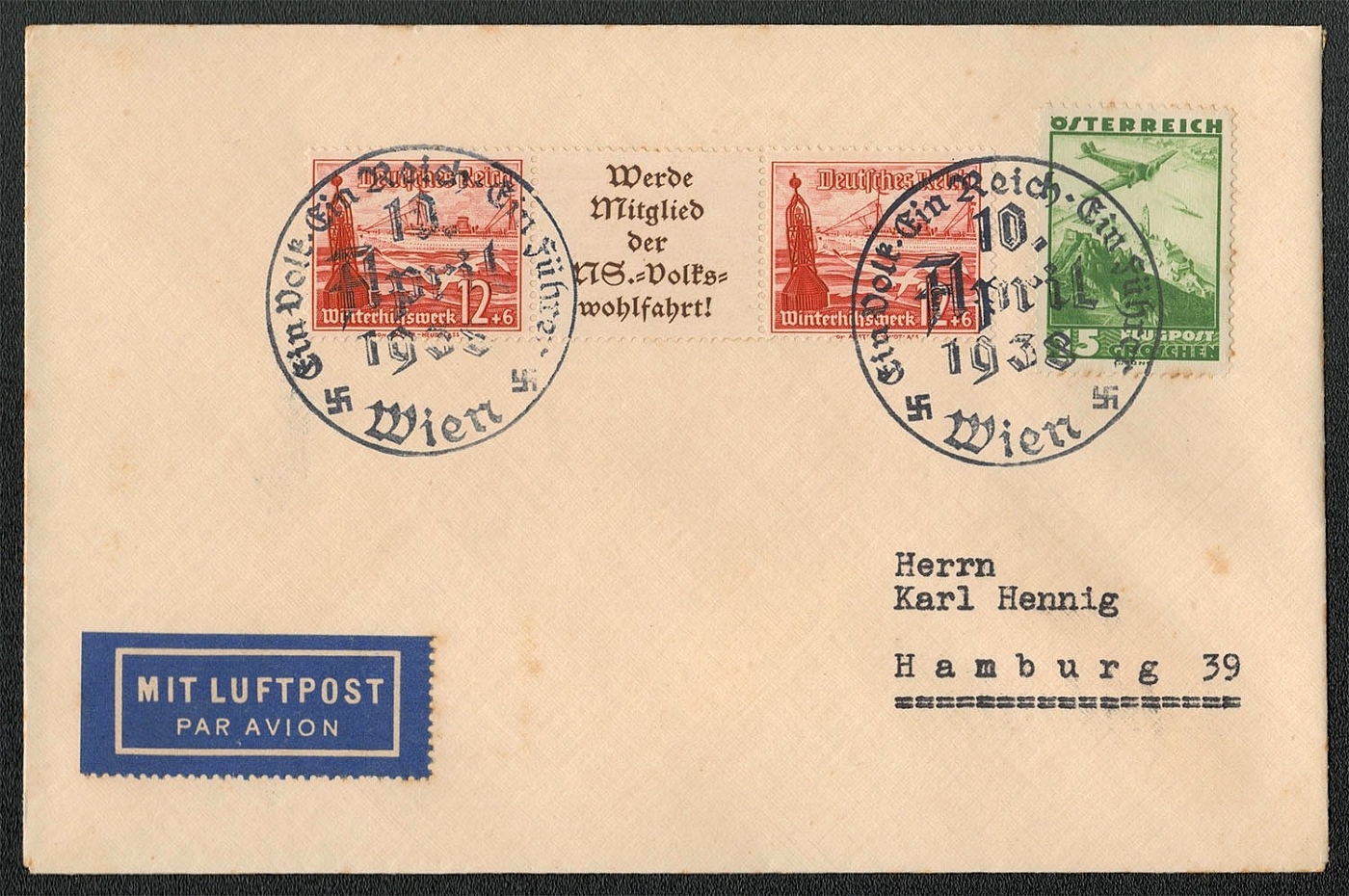
1938 Referendum in Austria Philatelically prepared, but postally used cover with mixed franking
Philatelically prepared, but postally used cover with mixed franking. The cover carries Germany B112a booklet pane and Austria C34. Posted in Wien on 10 April 1938. Austria was incorporated into the German Reich on 13 March 1938, and on 4 April 1938, all current German stamps became valid for use in the former Austria. Although Austrian stamps were valid in Austria until 30 September 1938, they were never valid in Germany. The rate of exchange at that time was 1 mark to 1.50 schilling. Mixed franking, as above, is often seen.
Unsold
624
$20
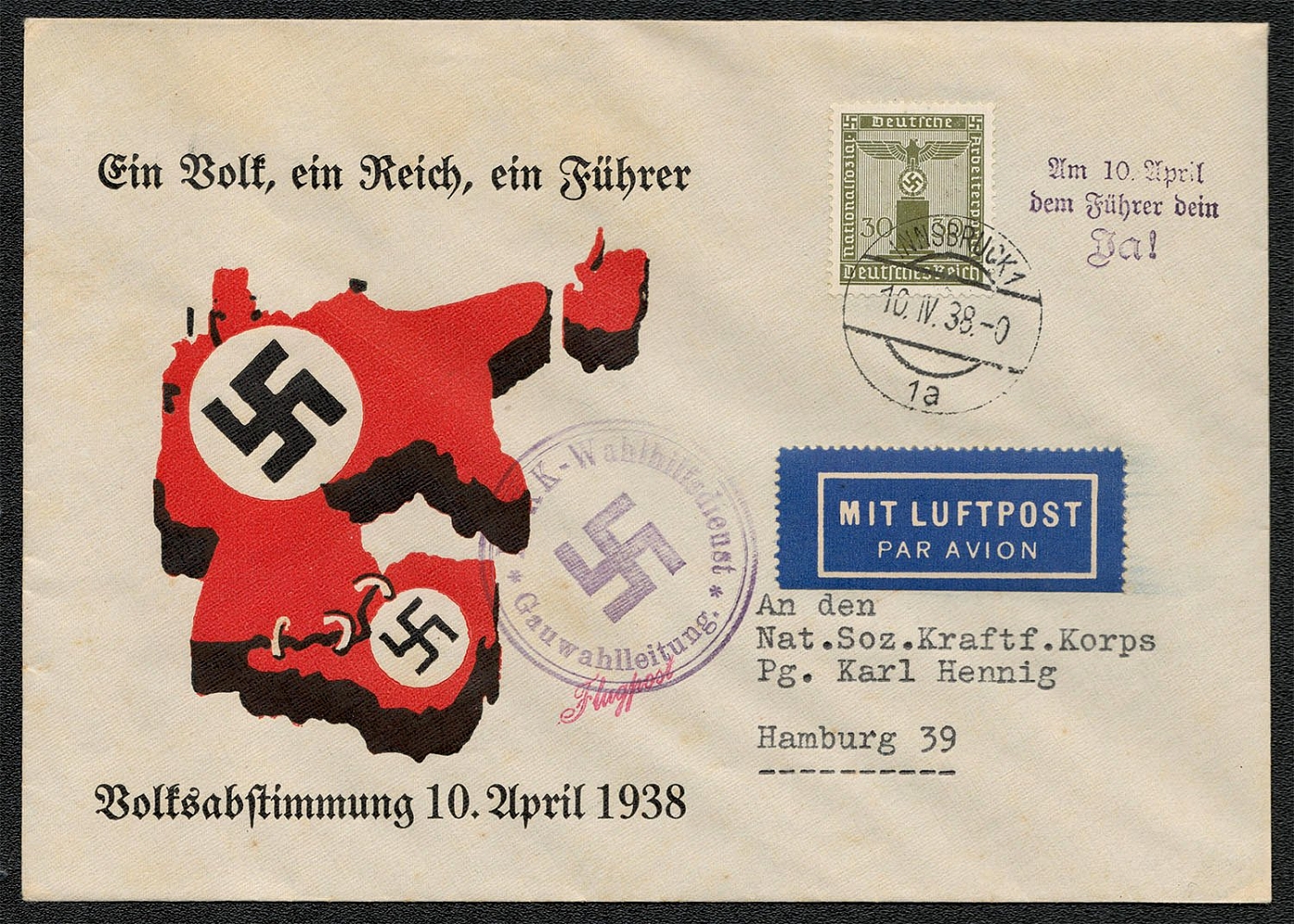
1938 Referendum in Austria cover with Scott S10. Postmarked Innsbruck
Philatelically prepared, but postally used cover with Scott S10. Postmarked Innsbruck 1 on 10 April 1938. Karl Hennig was a stamp dealer in Germany during the Third Reich era, and this collection contains a number of items (almost all with favor cancels, but most apparently postally used) originally acquired from his stock. He was, of course a party member (Parteigenossen or Pg.) and a member of the Nationalsozialistisches Kraftfahrkorps as reflected by the handstamp.
Sold for:
$20
625
$12
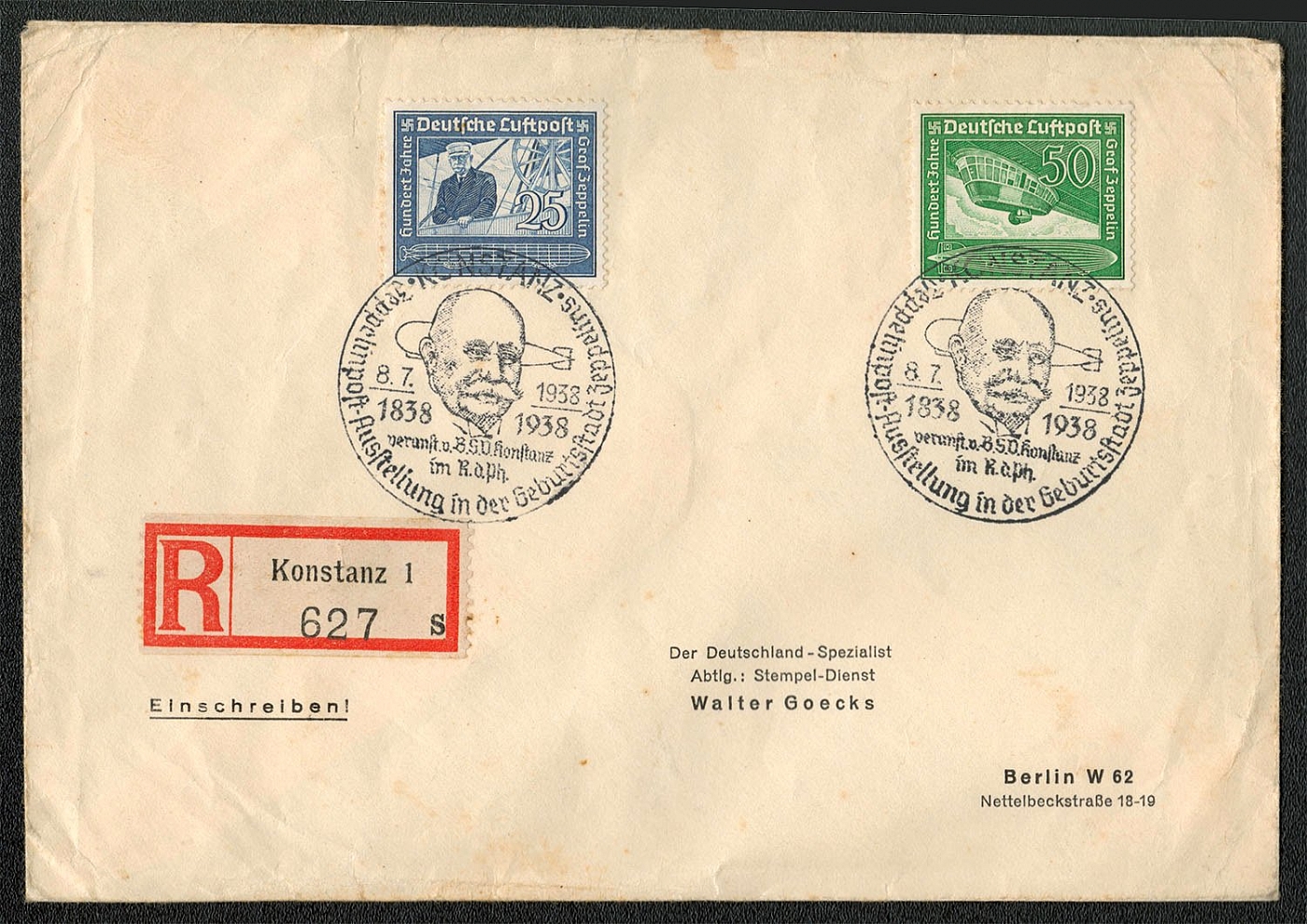
1938 Anniversary of the Birth of Graf en von Zeppelin Registered cover
Graf von Zeppelin was born 9 July 1838 in Konstanz a. Bodensee. He was educated for a military career, and was commissioned in 1858. He retired in 1891 with the rank of general, and turned to airship design and manufacture. The first of Zeppelin’s dirigibles flew in 1900, and commercial services in Germany began in 1910. The construction of Zeppelin airships proceeded rapidly for both military and civilian use, and played a significant role during World War I. Zeppelin died 8 March 1917 in Charlottenburg. A Zeppelin Post Exhibition was sponsored by the Stamp Collectors Club of Konstanz where the 8 July 1938 postmark (above) and a slogan postmark were used.
Sold for:
$12
626
$10
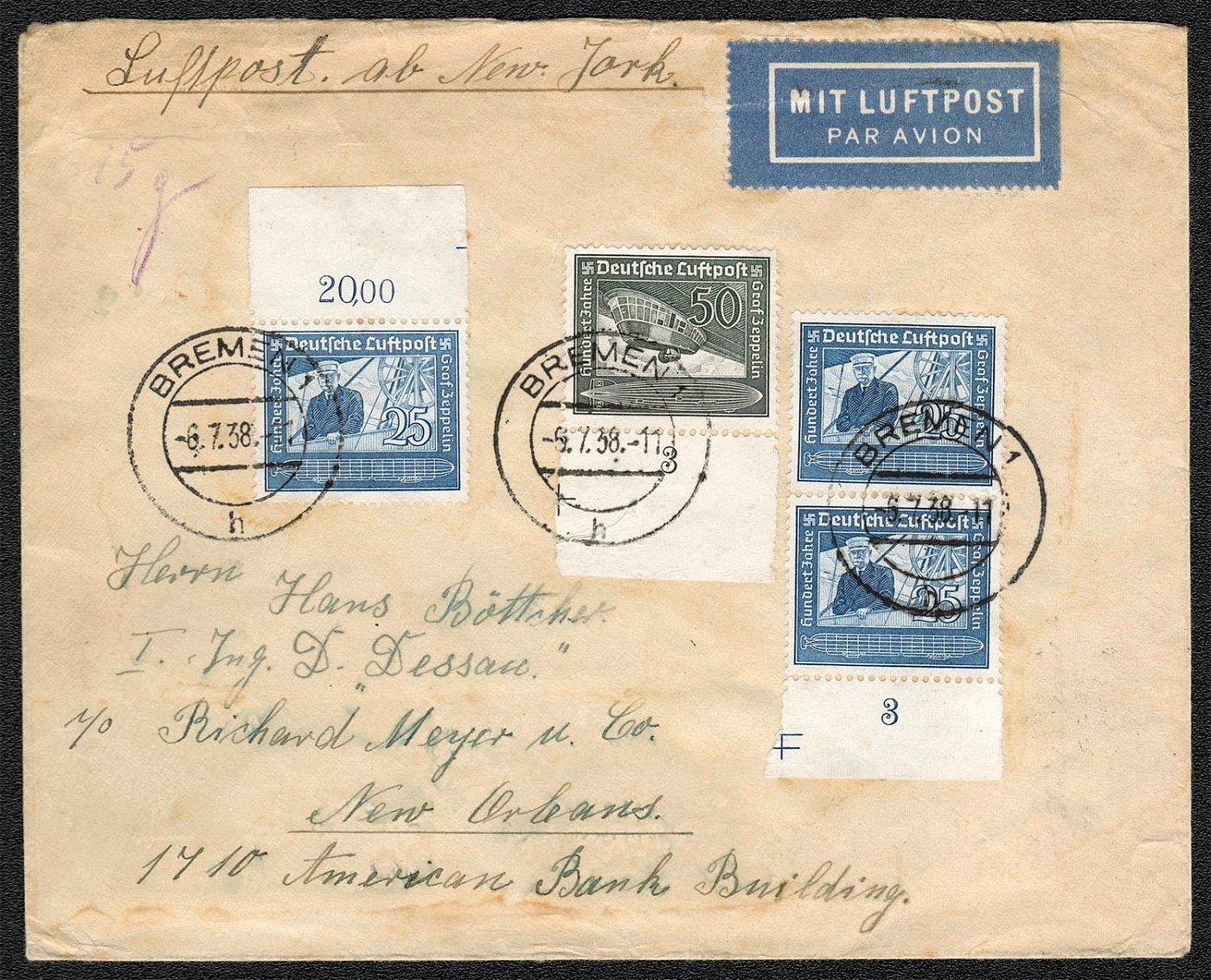
1938 Soiled, but interesting philatelically prepared cover from Bremen
Soiled, but interesting philatelically prepared cover from Bremen 6 July 1938 to Richard Meyer & Company 1410 American Bank Building New Orleans, Louisiana. Franked with three copies of Scott C59, and a single copy of Scott C60, all showing marginal tabs with accounting numbers. The letter was not received in New Orleans until 18 July, 12 days after posting. A long time indeed for Luftpost. Note that the date of mailing was one day after the first day of issue.
Sold for:
$10
627
$5
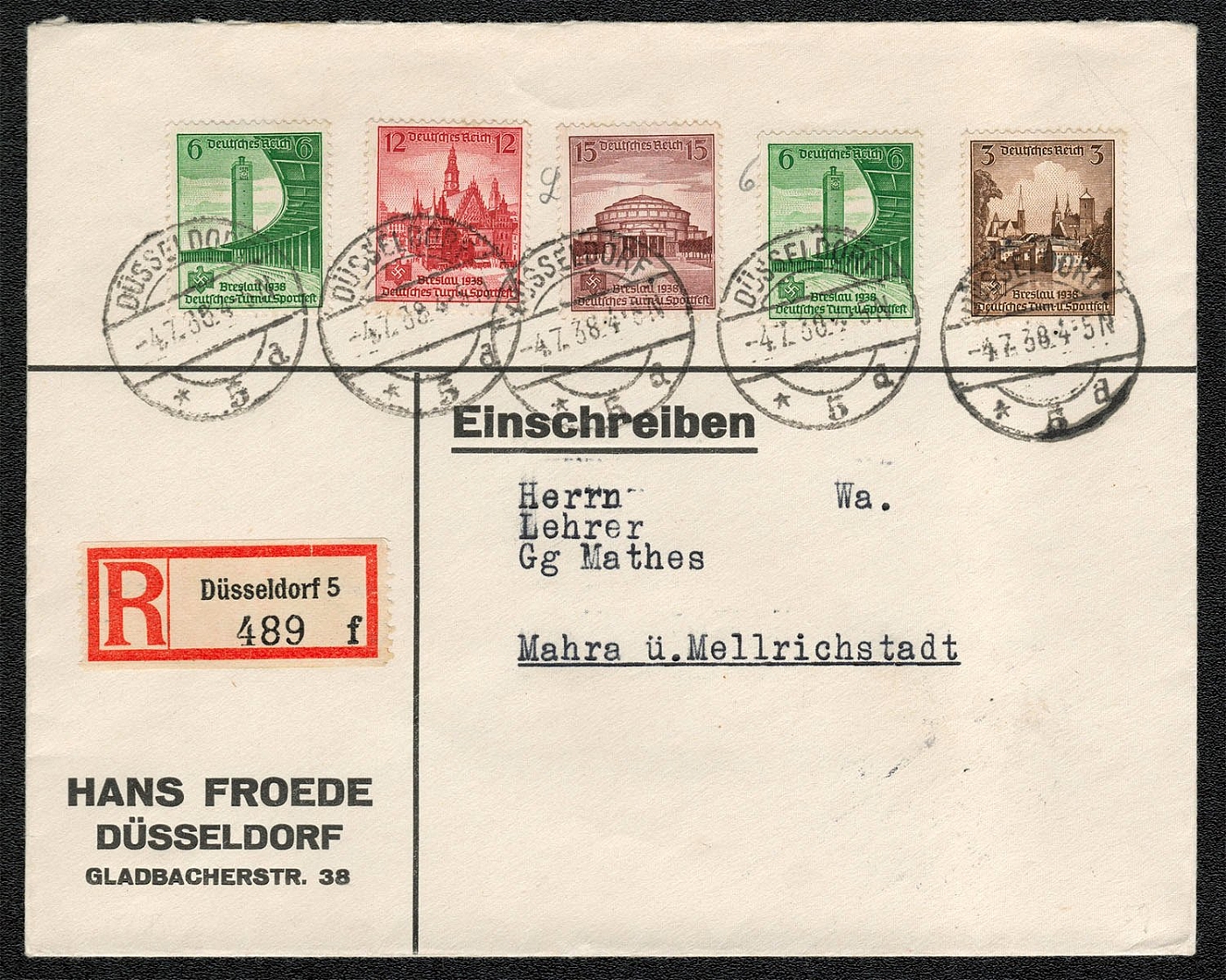
1938 The German Gymnastic and Sports Festival in Breslau Registered Cover
"Philatelically prepared, but postally used cover franked with the full set (plus) of Scott 486-489. Mailed 7 July 1938 from Diisseldorf 5 to Mahra u. Mellrichstadt. Diisseldorf (128 ft.) in Rhenish Prussia, was first mentioned in 1159 as a fishing village on the Diissel, a tributary of the Rhine. Its population in 1938 was 498,000. The city is pleasantly laid out with attractive gardens. Its industries include important steel works, cotton spinning and weaving, the manufacture of chemicals, etc. It rivals Essen as the most important town in the Rhenish-Westphalian industrial district. The fine arts have enjoyed special encouragement at Diisseldorf from early times. The Academy of Art was founded in 1767 and became one of the chief centers of German art. Mahra iiber Mellrichstadt per se is not identified, but Mellrichstadt is 50 miles north of Bamberg in southern Germany. Its 1938 population was approximately 2500. It is noted for St. Kilian’s Roman Catholic Church built in the 14""' century."
Sold for:
$5
628
$5
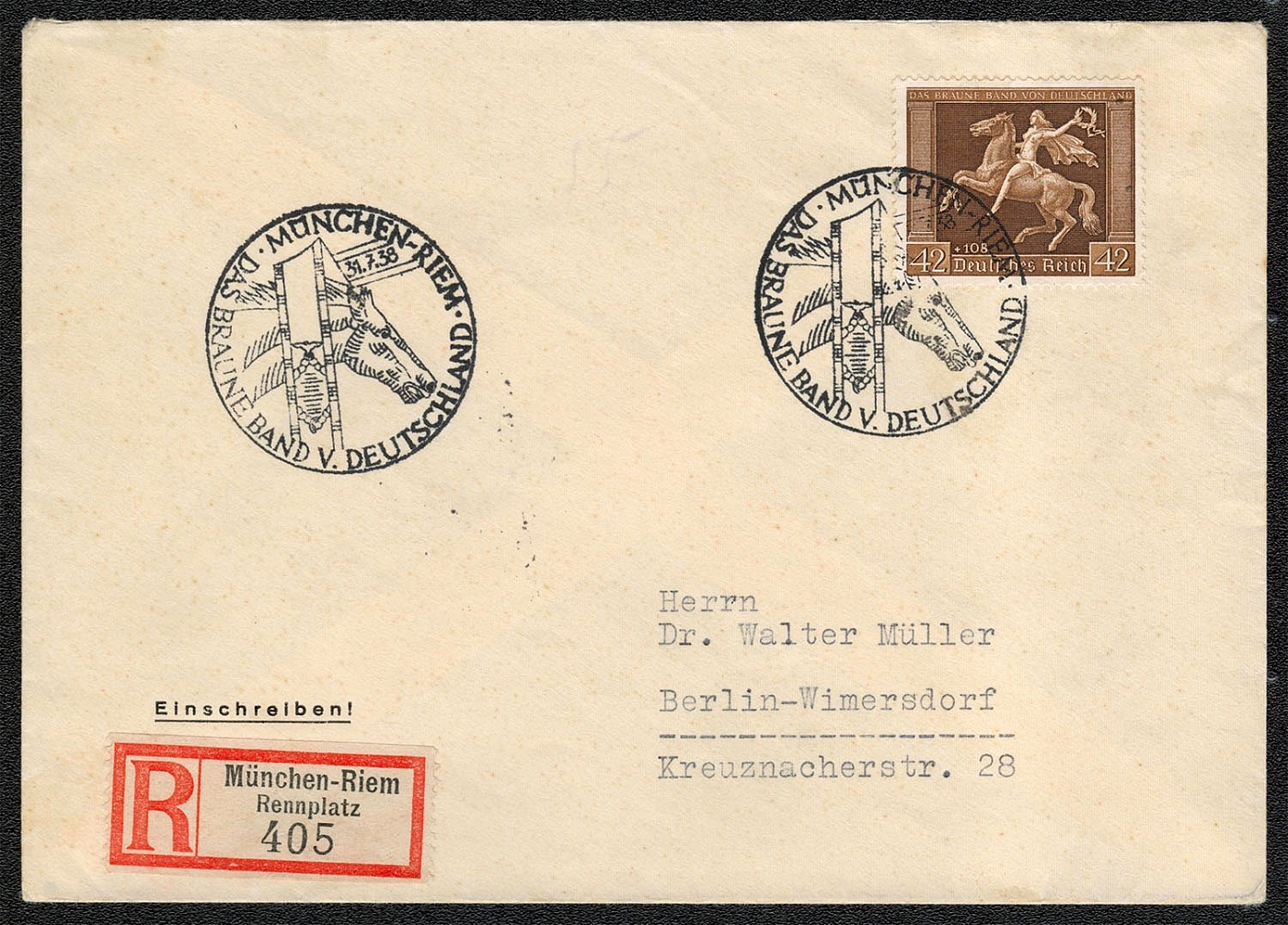
1938 Registered cover franked with Sc B119 on 31 July 1938. Posted at the Munich-Riem Race Track
Registered cover franked with Sc B119 on 31 July 1938. Posted at the Miinchen-Riem Race Track on the day of the race and the only day this particular postmark (depicting the head of a horse with the Brown Ribbon around its neck) was used. The race was won by a French horse named Antonym, ridden by A. Tucker. The second horse was also French, called Vatelloc. The surtax on the stamp was for Hitler’s Culture Fund.
Sold for:
$5
629
$5
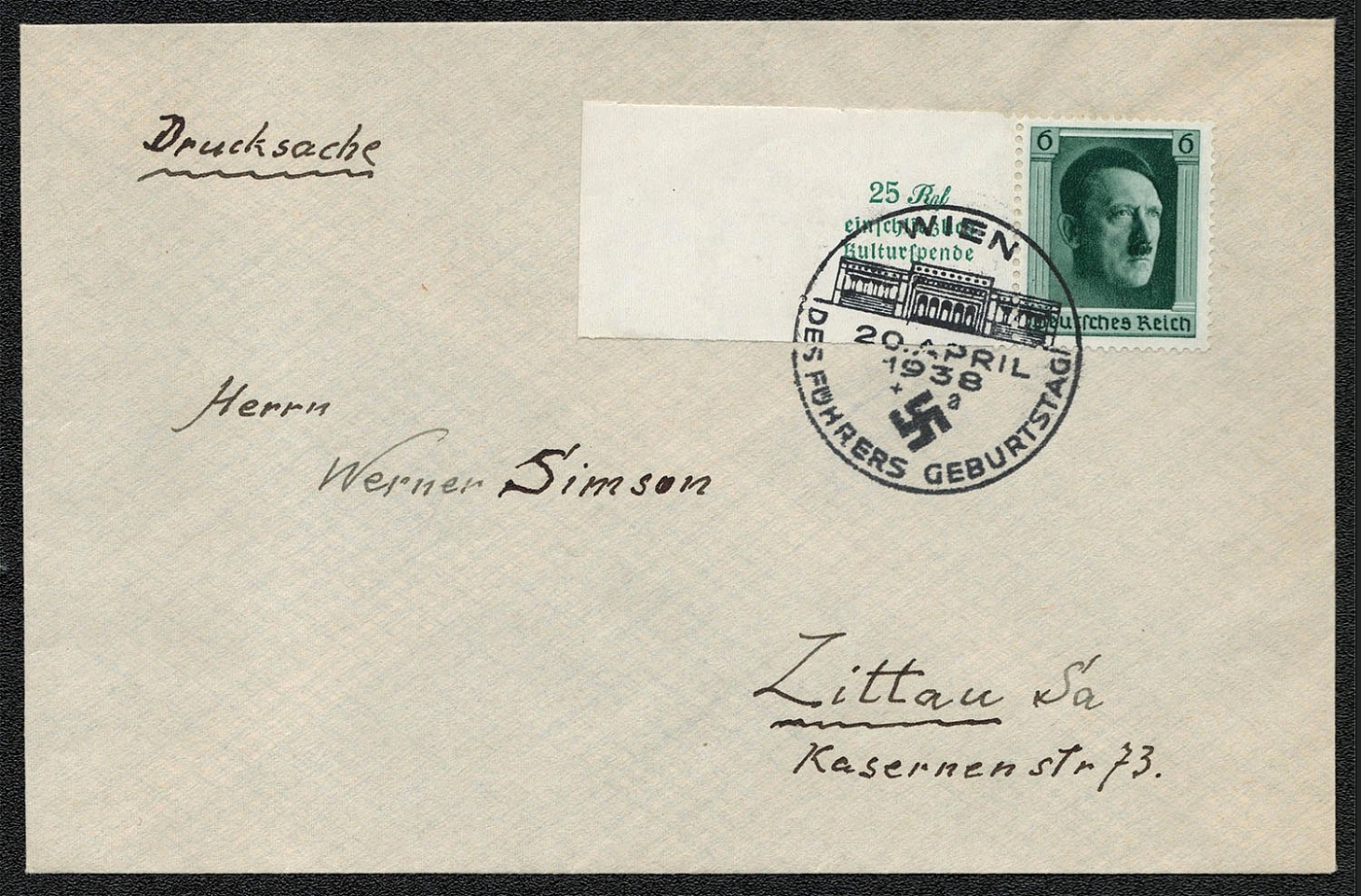
1938 Scott В 102a with Special postmark Wien Fuehrer's birthday
1938 Scott В 102a with Special postmark Wien Fuehrer's birthday
Sold for:
$5
630
$35
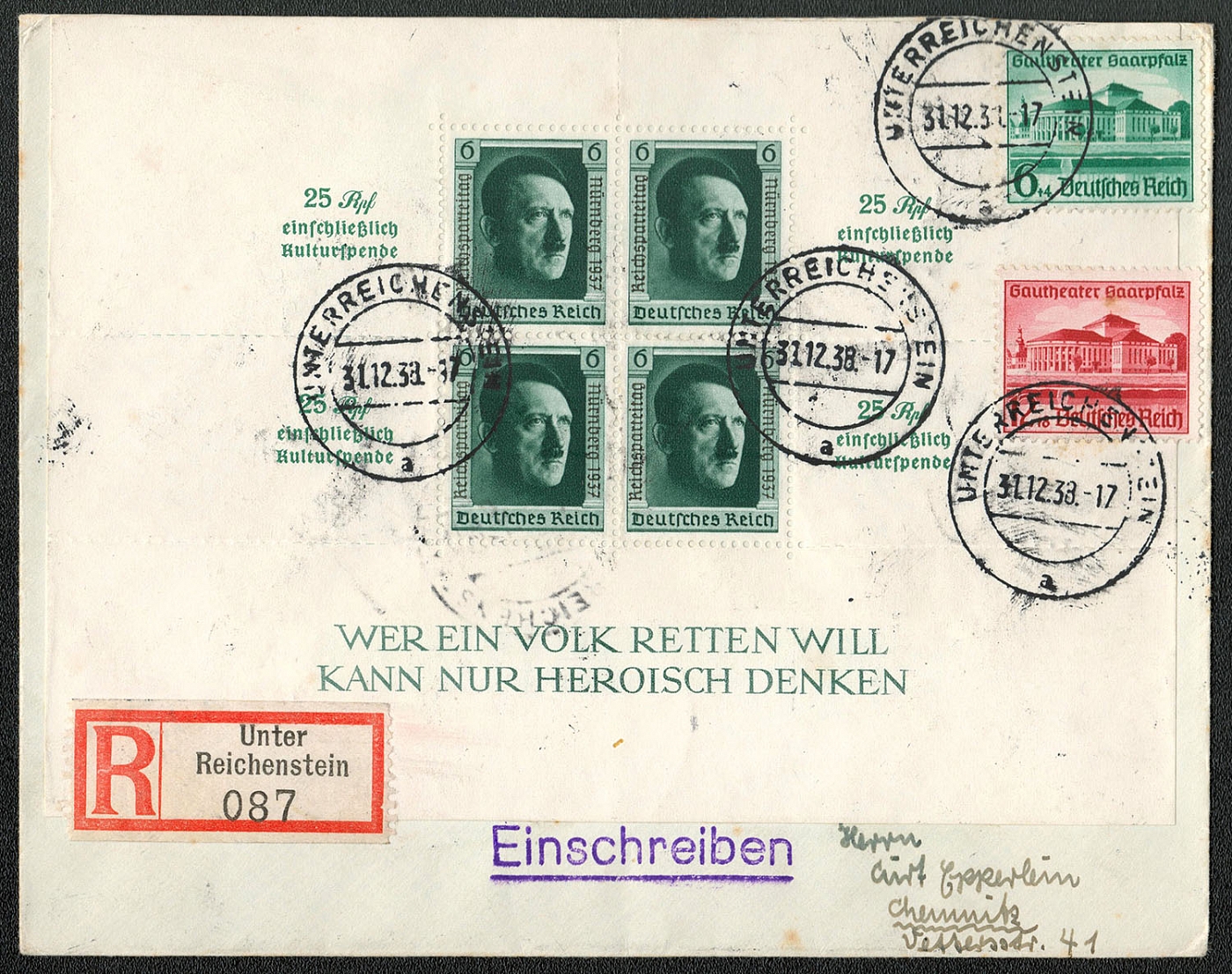
1938 Registered cover with Souvenir Sheet sent to Chemnitz
1938 Registered cover with Souvenir Sheet sent to Chemnitz
Sold for:
$35
631
$10
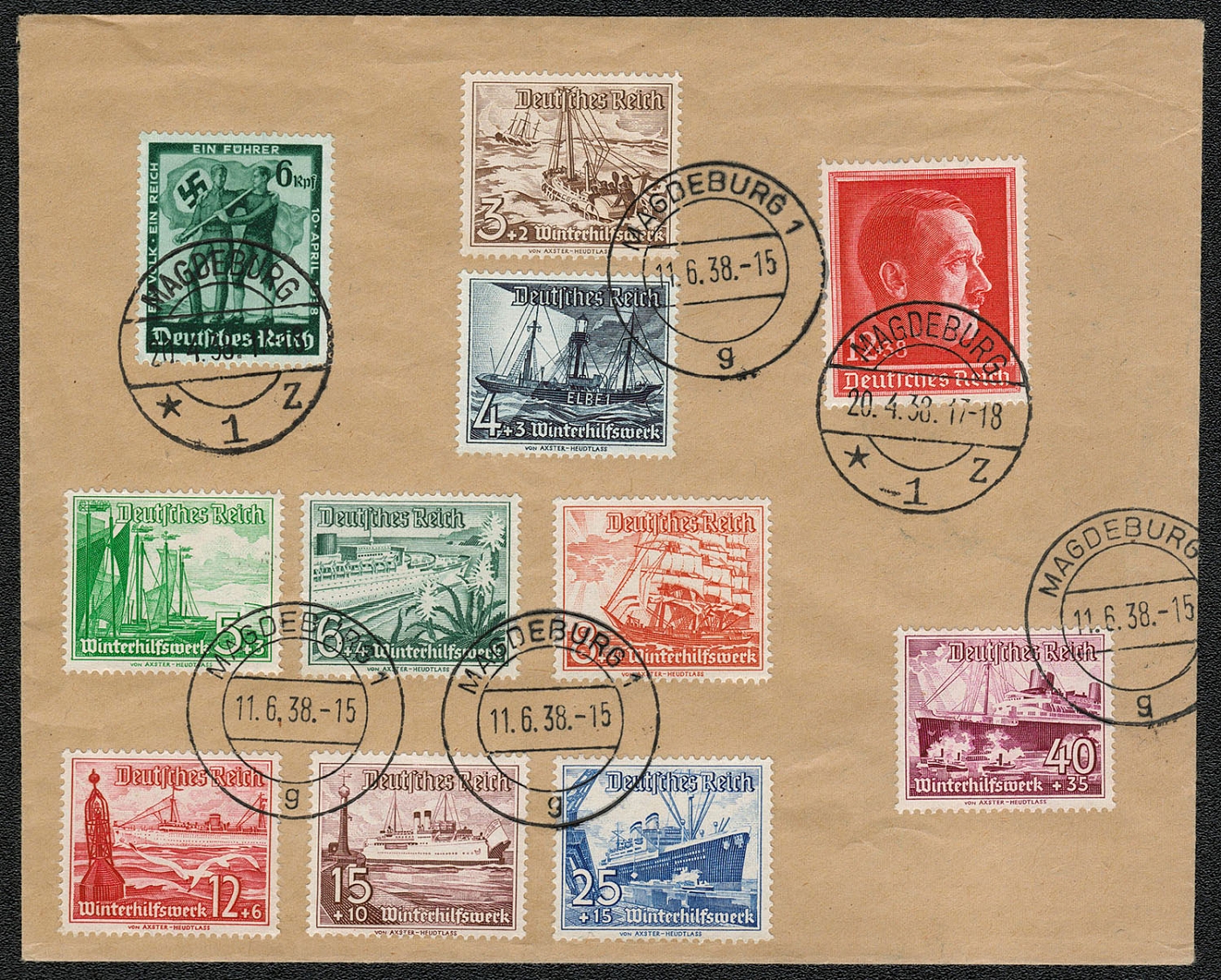
1938 Souvenir cover with full set of Ships stamps
1938 Souvenir cover with full set of Ships stamps
Sold for:
$10
632
-
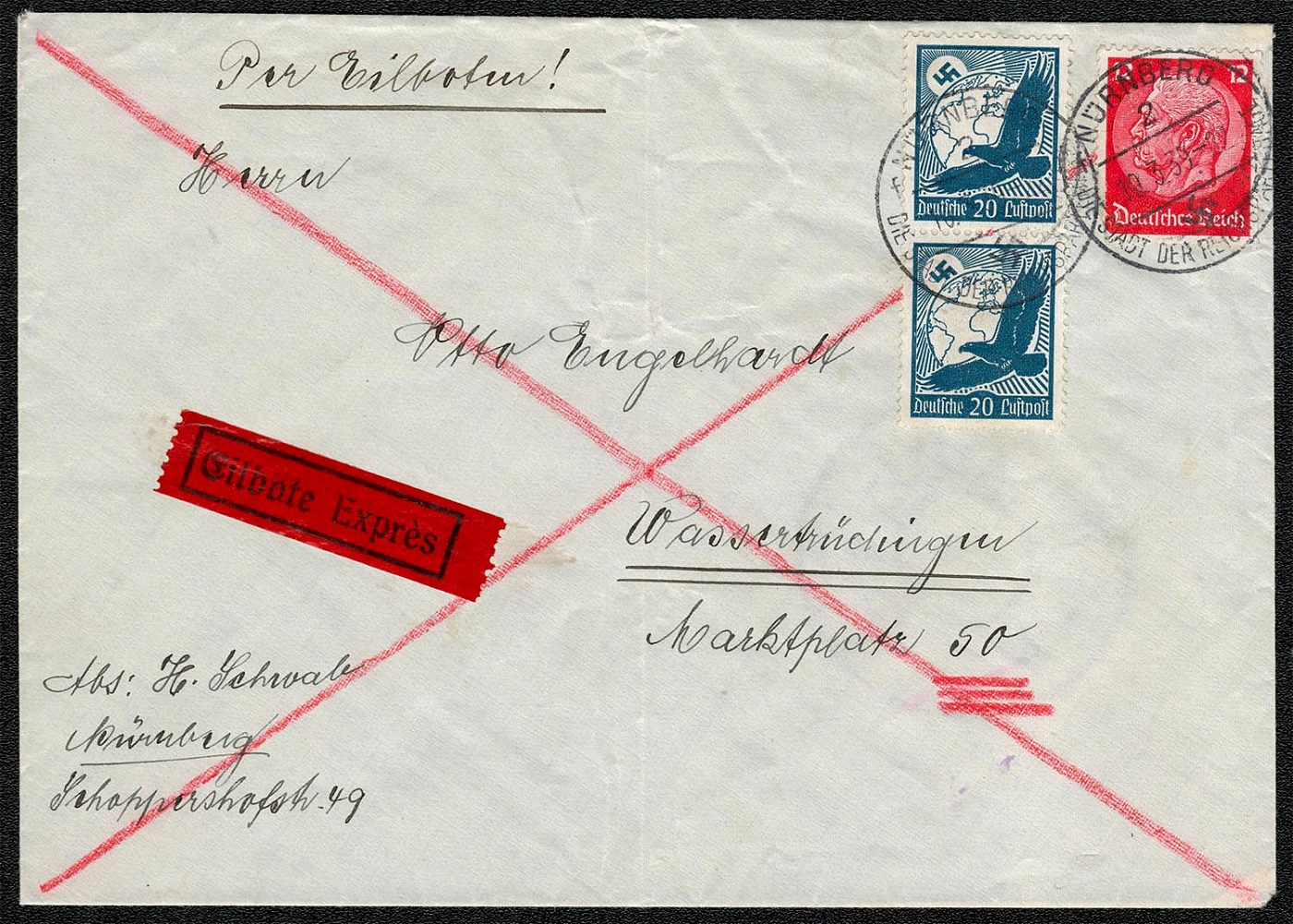
1939 Cover franked with a pair of Sc C49 and a single Sc 422. Posted in Nuremberg
Luftpost cover franked with a pair of Sc C49 and a single Sc 422. Posted in Nurnberg 2 on 10 March 1939. The affixed stamps pay a 52 Rpf air mail rate (?) although the addressee was in Wassertriidingen, a scant 33 air miles southwest of Nurnberg! The full meaning of the label “Gilbote Expres” is not known at this time.
Unsold
633
$10
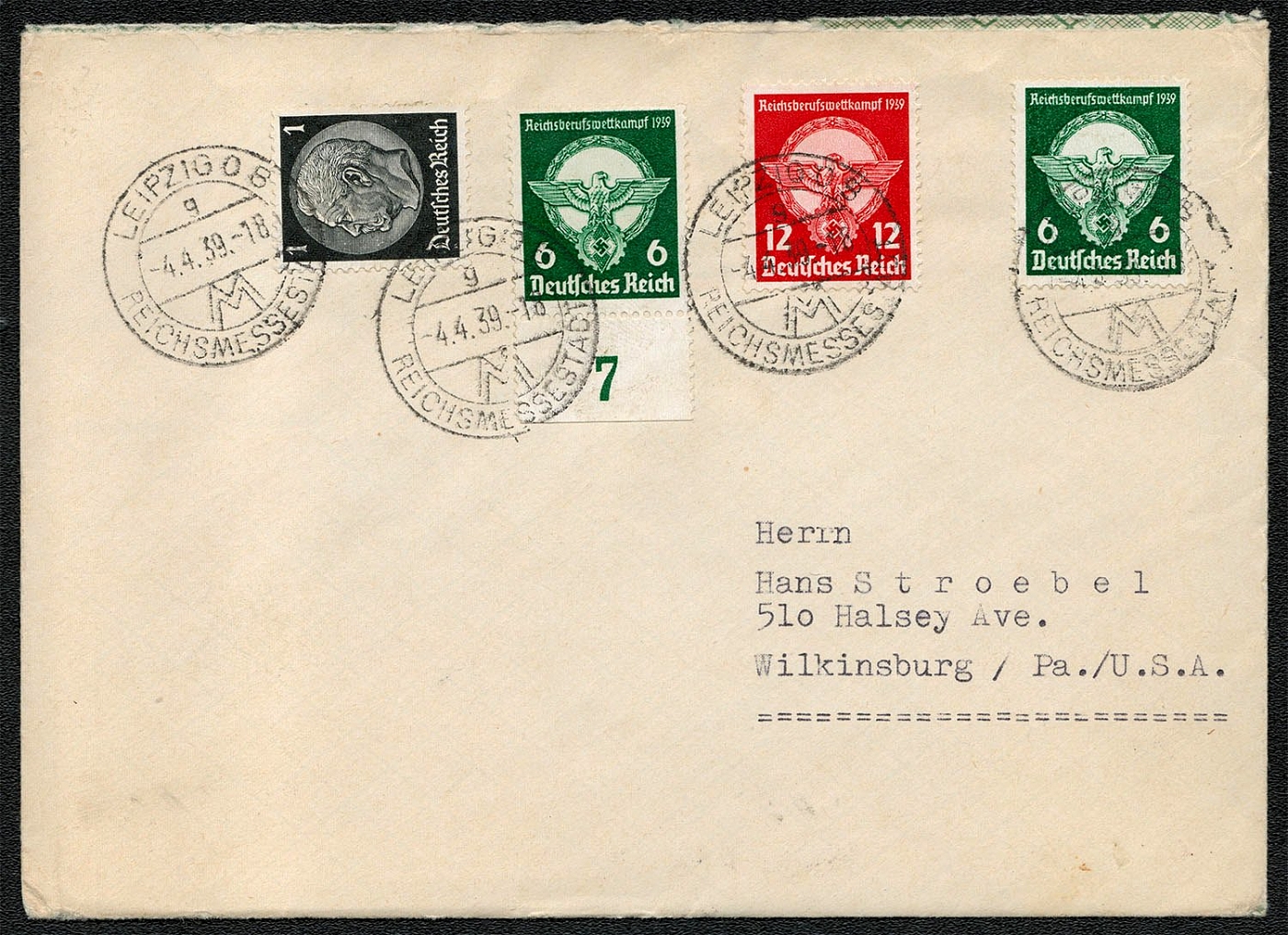
1939 Cover franked with Scott Nos. 415 and 490-91 paying the international postal rate to the United States
Cover franked with Scott Nos. 415 and 490-91 paying the international postal rate to the United States. The cover was posted in Leipzig 08 on 4 April 1939, the first day of issue. There was no special postmark for the Vocational Competition of 1939. The letter within the cover, (a reproduction of which is on the right) is from C. F. Lucke, a philatelic dealer to another dealer in Wilkinsburg, Pennsylvania. Loosely translated, it reads as follows:
Sold for:
$10
634
$10
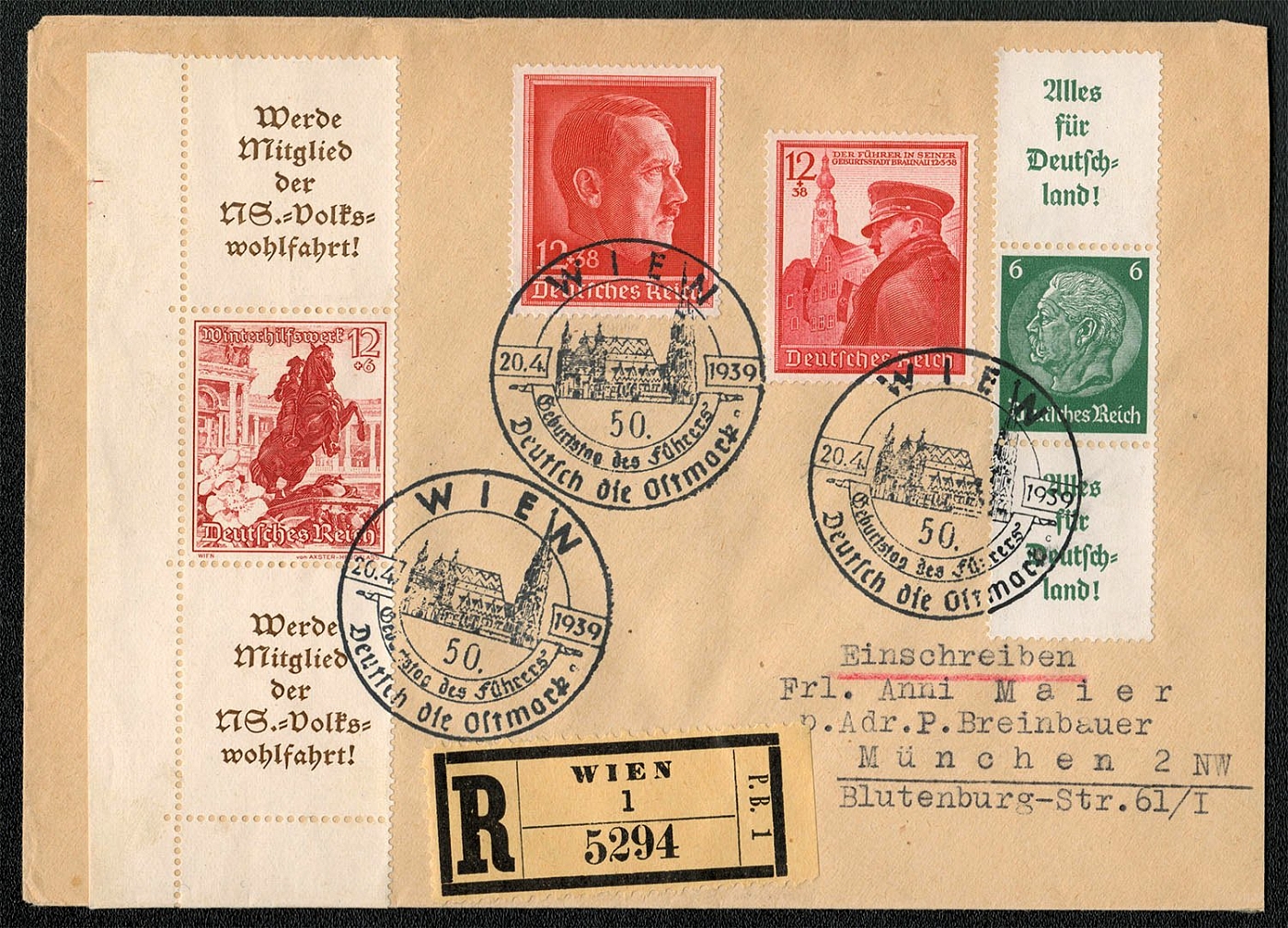
1939 Registered cover mailed from Wien franked with Sc Bl 18, 419 and B128
Philatelically prepared, but postally used and registered cover mailed from Wien to Munchen on 20 April 1939. In addition to Sc B137, the cover is franked with Sc Bl 18, 419 and B128. The latter two with labels are taken from sheets intended for stamp booklets. The sonderstempelungen issued for Hitler’s fiftieth birthday are among the most picturesque of the Third Reich era. In addition to the Austrian capital of Wien, in which St. Stephen’s Church is depicted, seven other towns were chosen to reflect significant milestones in Hitler’s career. The inscription in the Wien cancel reads: Austria is German.
Sold for:
$10
635
$10
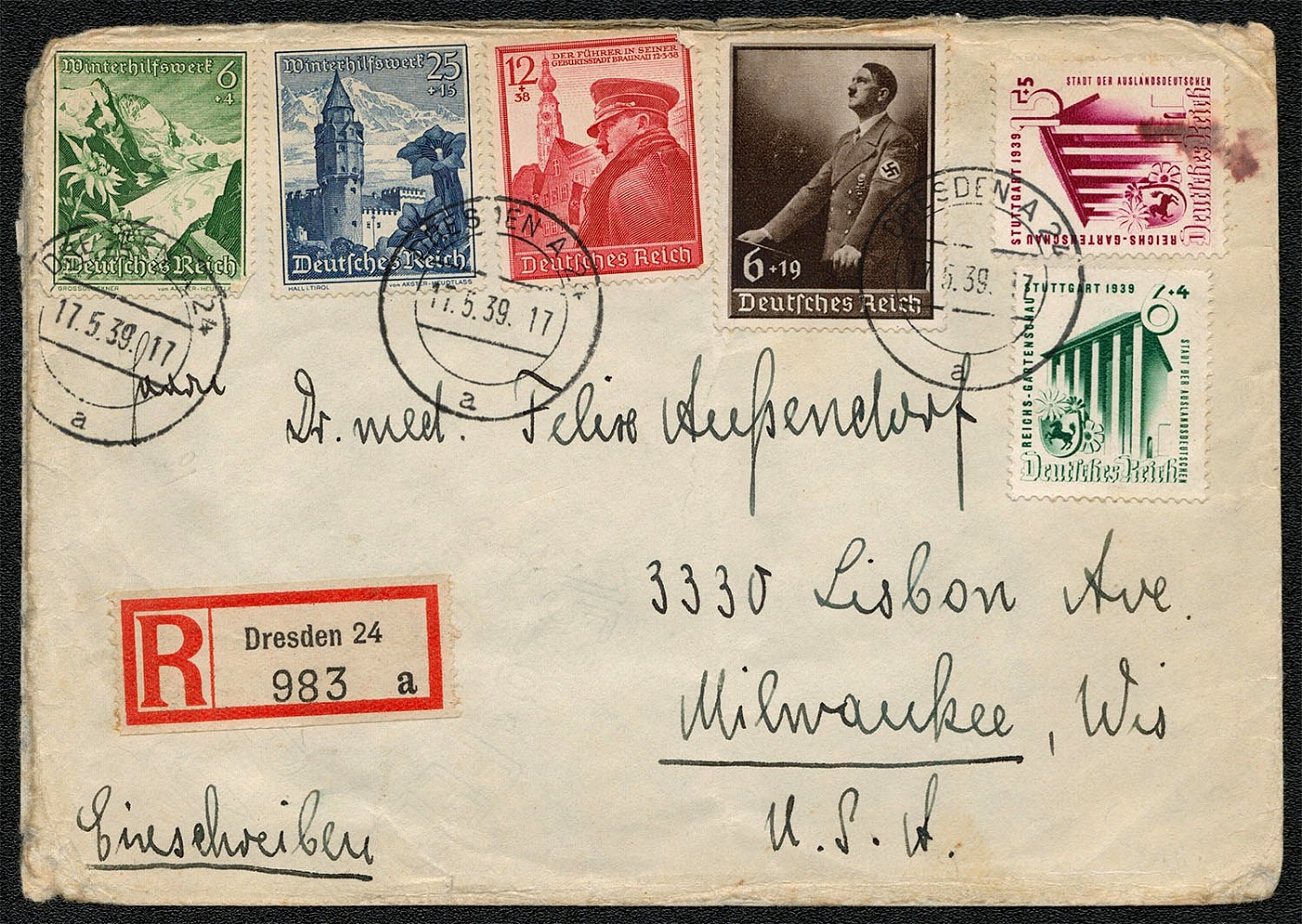
1939 Registered cover mailed 17 May 1939 by Graduate Engineer Carl Aussendorf of Dresden to Dr. Felix Aussendorf, M.D. of Milwaukee
Soiled, but interesting registered cover mailed 17 May 1939 by Diplomingenieur (Graduate Engineer) Carl Aussendorf of Dresden to Dr. Felix Aussendorf, M.D. of Milwaukee. Backside markings indicate the letter was received in Milwaukee on May 26, 1939. Scott Nos. B126, ВІЗО, B137, B138-9, and B140 were used for postage and international registration, but 70 Rpf seems excessive, although philatelically desirable. Compare this cover with the similarly franked cover from Luckenwalde dated 11 May 1939.
Sold for:
$10
636
$10

1939 Registered cover with multiple franking Sc B120, B124, B125, B137, B138, B139, B140
Registered cover with multiple franking (Sc B120, B124, B125, B137, B138, B139, B140). The postal fees paid (54 Rpf) were far more than the average weight letter would require. Therefore, it is apparent that the cover, while serving some postal service, was obviously philatelically prepared. Luckenwalde, the town from which the letter was mailed on 11 May 1939, lies 31 miles southwest of Berlin, and had a population of approximately 27,000 at that time.
Sold for:
$10
637
$8
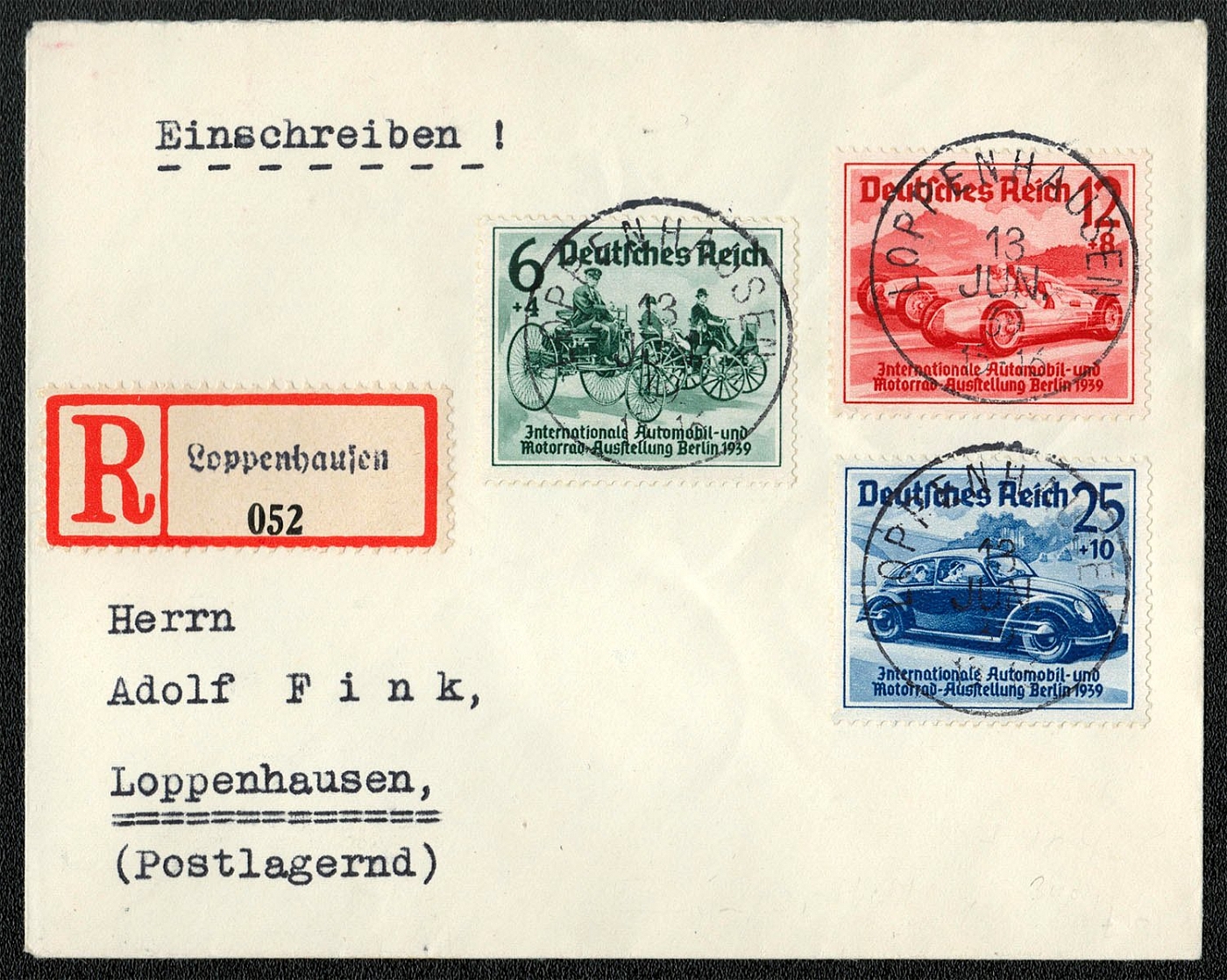
1939 Registered cover franked with Scott B134-B136 and cancelled 13 June Loppenhausen
Registered cover franked with Scott B134-B136 and cancelled 13 June 1939 Loppenhausen. Loppenhausen would appear to be a city or town inasmuch as it had a postmark and a registration label, but it cannot be located in any of this collector’s geographical references. Postlagernd in the address translates as general delivery.
Sold for:
$8
638
$8
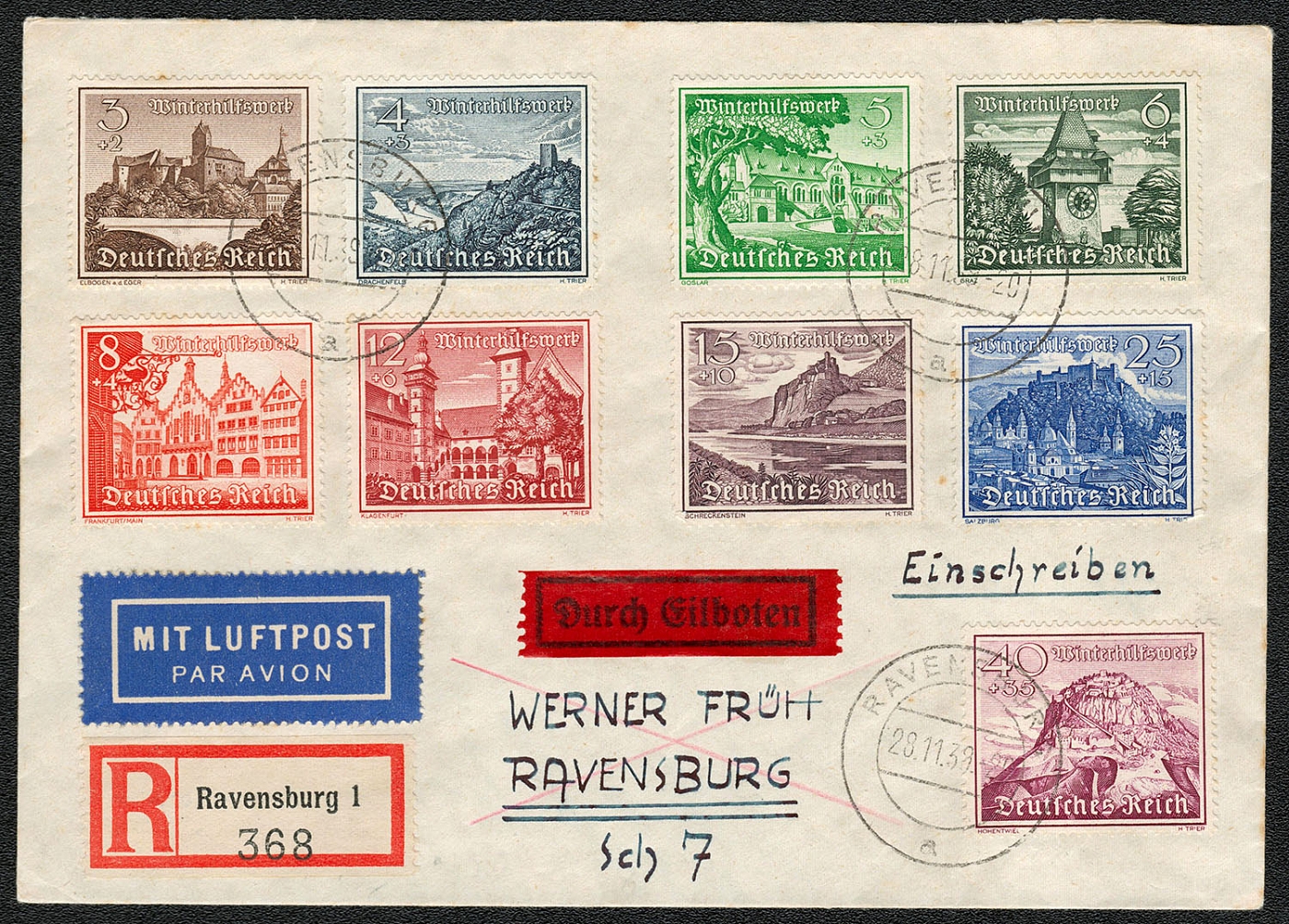
1939 Registered Airmail Cover with Full set stamps
1939 Registered Airmail Cover with Full set stamps
Sold for:
$8
639
$12
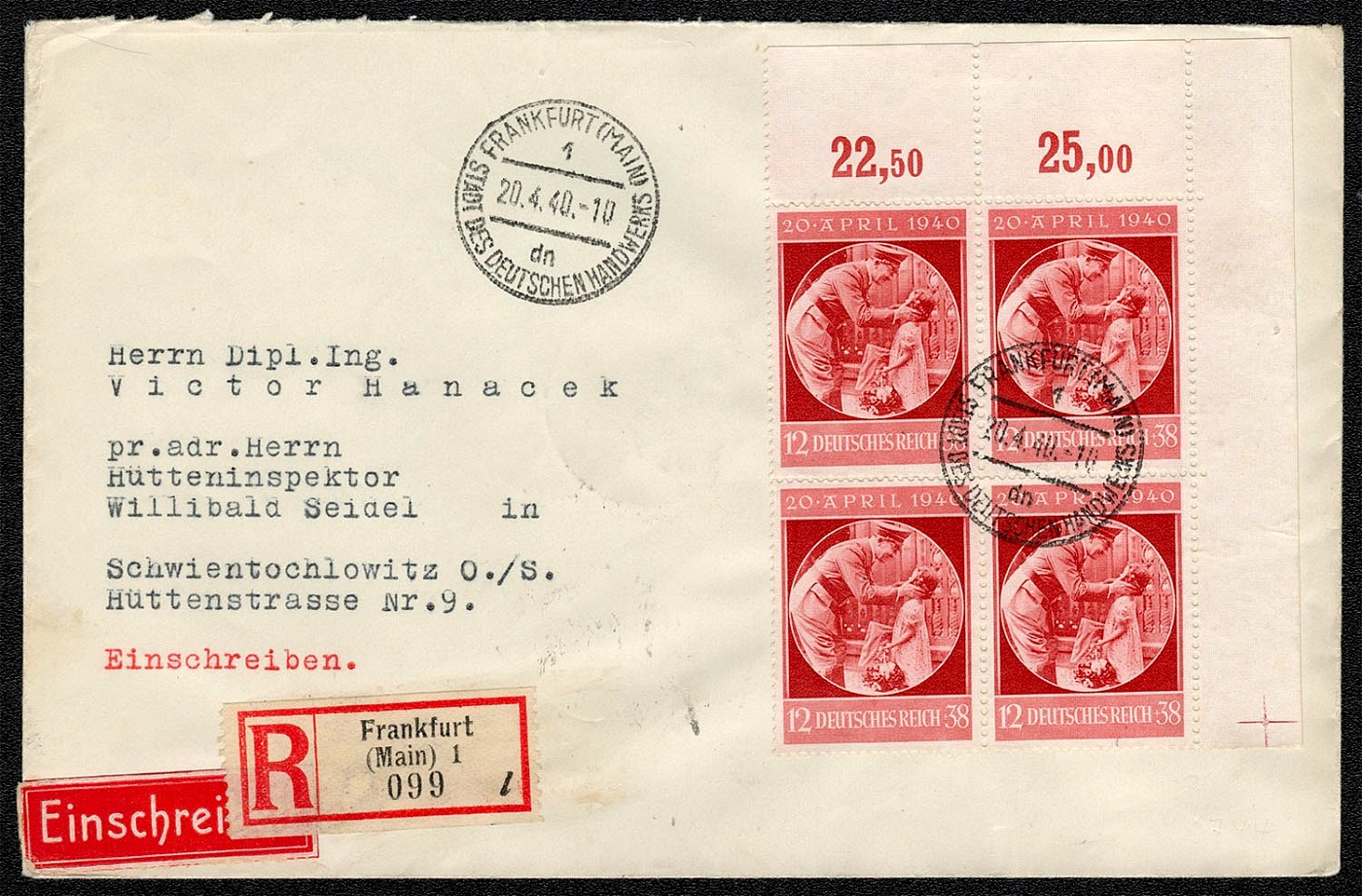
1940 Registered cover franked with a block of four of Sc B203 with control number tabs
Philatelically prepared, but postal used cover franked with a block of four of Sc B203 with control number tabs. Mailed by a medical doctor in Frankfurt (Main) on 20 April 1940 to a graduate engineer employed as a metallurgical inspector in Schweintochlowitz (Oberschles). The latter is believed to have been in occupied Poland. The slogan in the postmark identifies Frankfurt as The City of German Craftsmanship.
Sold for:
$12
640
$10
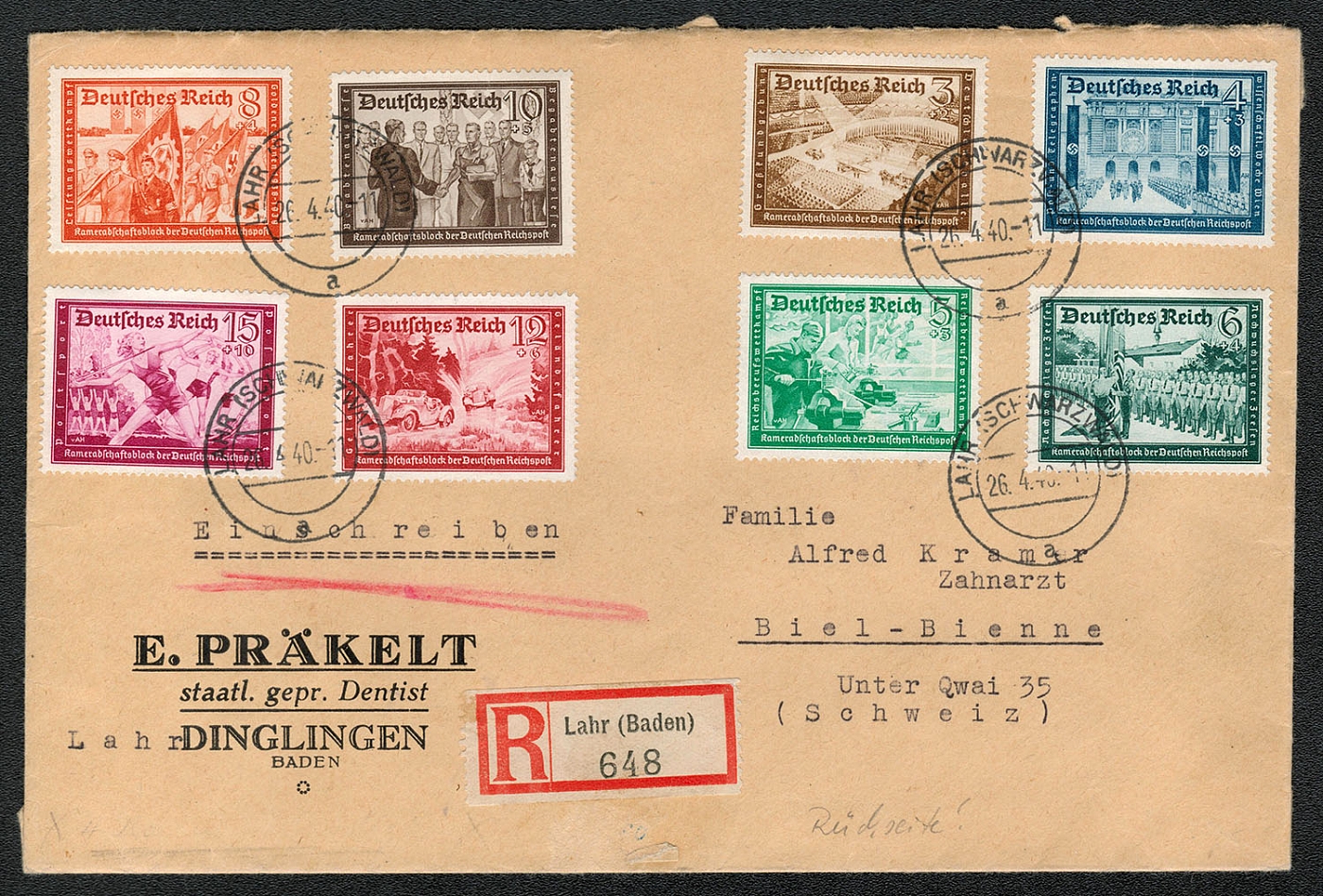
1940 Registered Censorship cover with Full set stamps Lahr - Biel-Bienne
1940 Registered Censorship cover with Full set stamps Lahr - Biel-Bienne
Sold for:
$10
641
$5
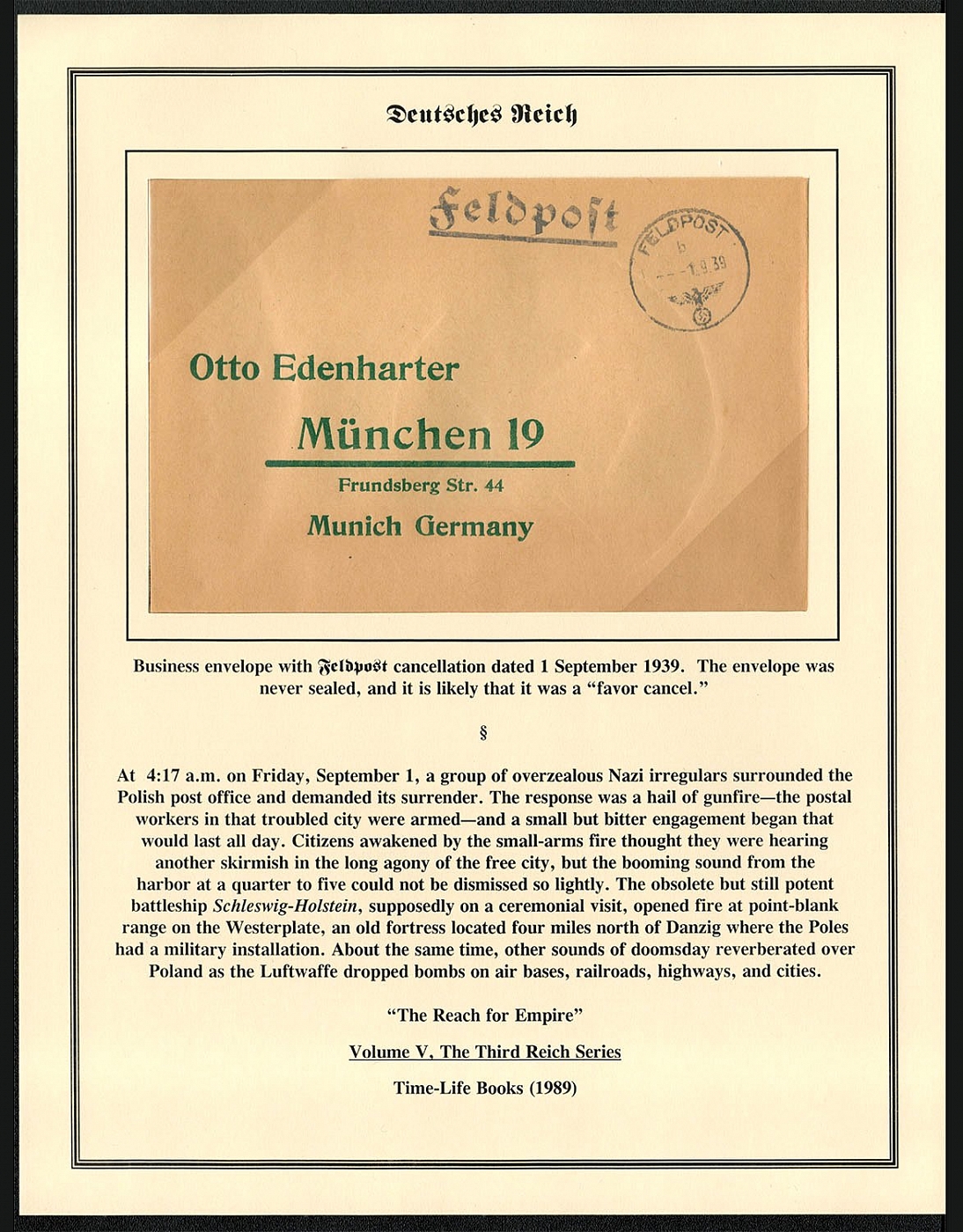
1939 Business envelope with cancellation dated 1 September 1939. The envelope was never sealed, and it is likely that it was a favor cancel
Business envelope with cancellation dated 1 September 1939. The envelope was never sealed, and it is likely that it was a “favor cancel.” § At 4:17 a.m. on Friday, September 1, a group of overzealous Nazi irregulars surrounded the Polish post office and demanded its surrender. The response was a hail of gunfire—the postal workers in that troubled city were armed—and a small but bitter engagement began that would last all day. Citizens awakened by the small-arms fire thought they were hearing another skirmish in the long agony of the free city, but the booming sound fr om the harbor at a quarter to five could not be dismissed so lightly. The obsolete but still potent battleship Schleswig-Holstein, supposedly on a ceremonial visit, opened fire at point-blank range on the Westerplate, an old fortress located four miles north of Danzig wh ere the Poles had a military installation. About the same time, other sounds of doomsday reverberated over Poland as the Luftwaffe dropped bombs on air bases, railroads, highways, and cities. “The Reach for Empire” Volume V, The Third Reich Series
Sold for:
$5
642
-
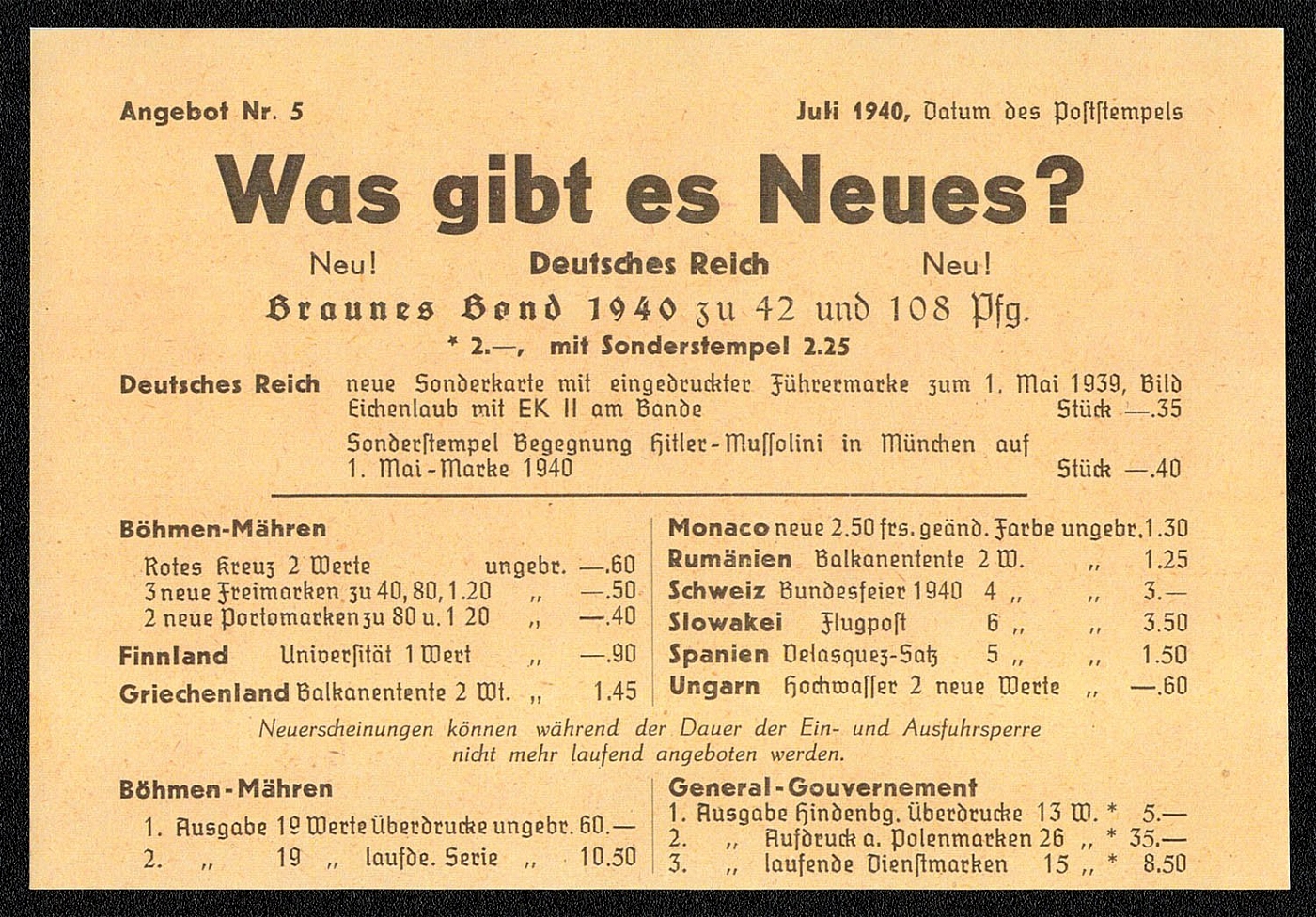
1940 Postage Meter Cover
What is New? Herr Geiling’s July 1940 offerings included new issues from many central European countries besides Germany and its conquests. One asking price has been analyzed, the 26 value Generalgouvernement (N30-N55) set. He listed it as RM 35 RM or $17.50 at the contemporary exchange rate. In 2001 dollars, that would be equivalent to $107.45. The current Scott Catalogue value, however, is $100.21, and a US dealer in 2001 would ask half catalogue or about $50, less than half of Herr Geiling’s 1940 price.
Unsold
643
$35
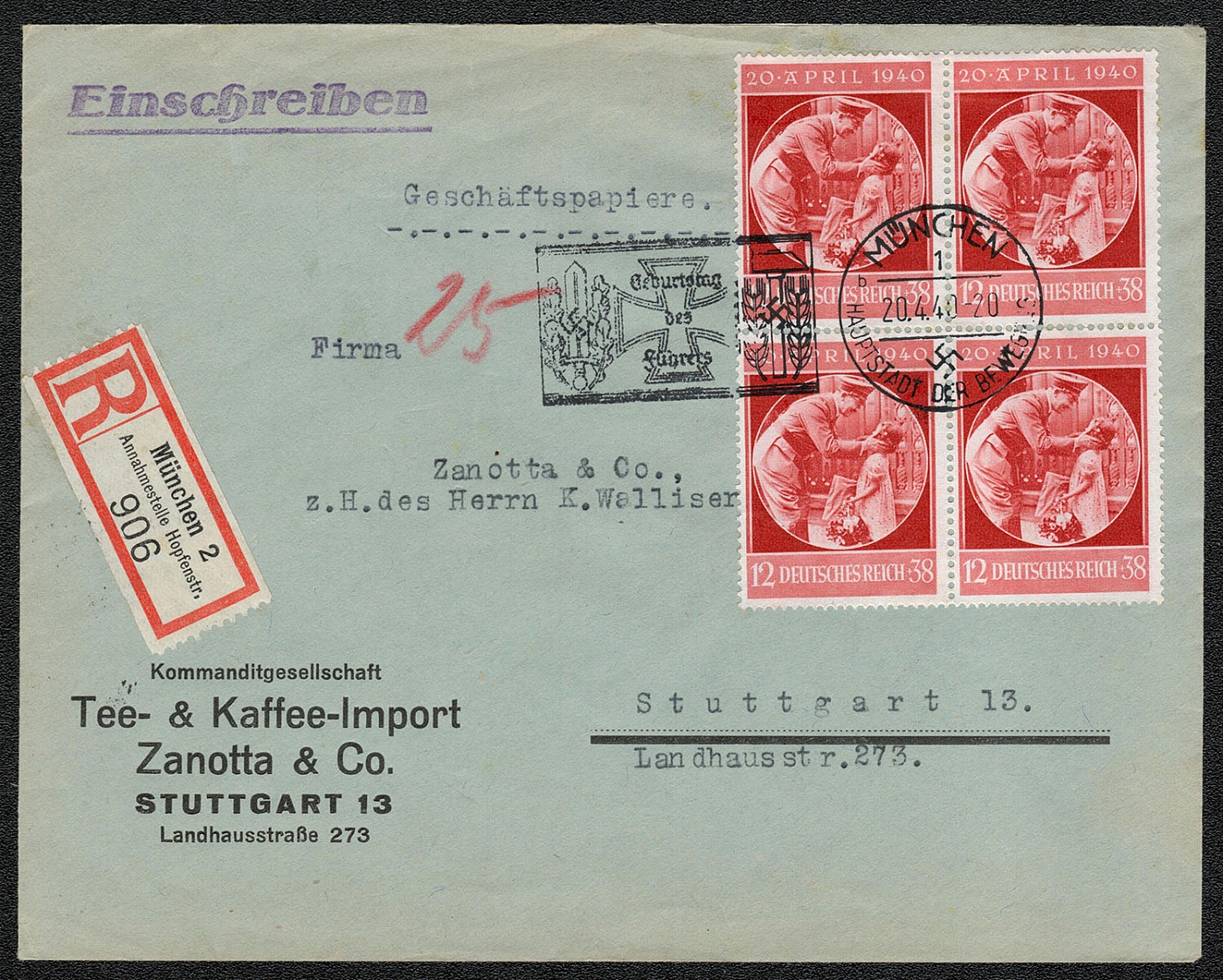
1940 Registered cover with Block of four franked and Special postmark Fuehrer's birthday
1940 Registered cover with Block of four franked and Special postmark Fuehrer's birt
Sold for:
$35
644
-
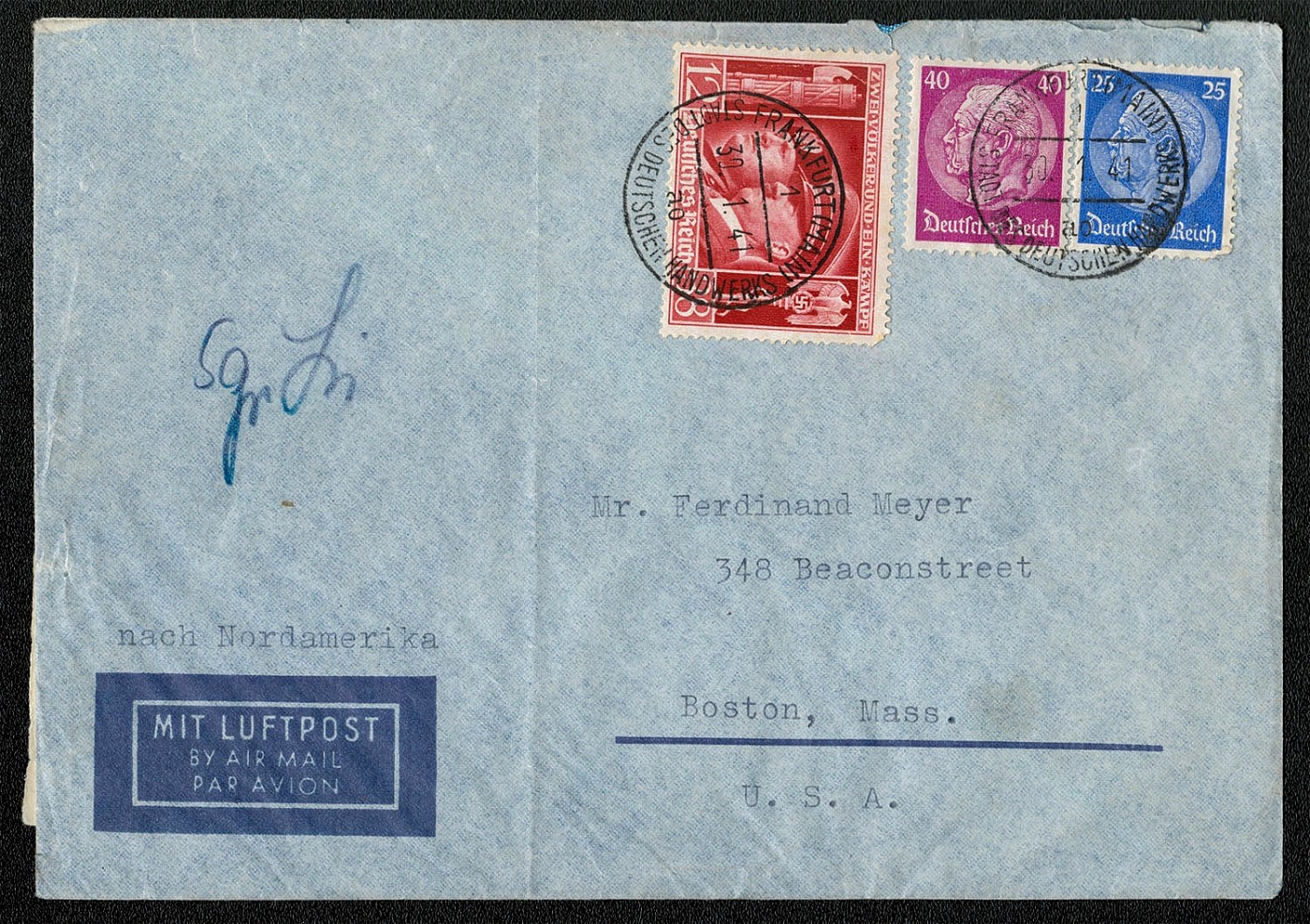
1941 Censorship Cover Postally used German-Italian Brotherhood in Arms (Michel 763) on its first day of issue to Boston
Postally used German-Italian Brotherhood in Arms (Michel 763) on its first day of issue to Boston. Additionally franked with the 25 and 40 Rpf values of the 1933-36 Hindenburg definitive issue to meet the international air mail rate. Posted in Frankfurt am Main on 30 January 1941. The Werbestempel promotes Frankfurt as the City of German Handwork.
Unsold
645
$7
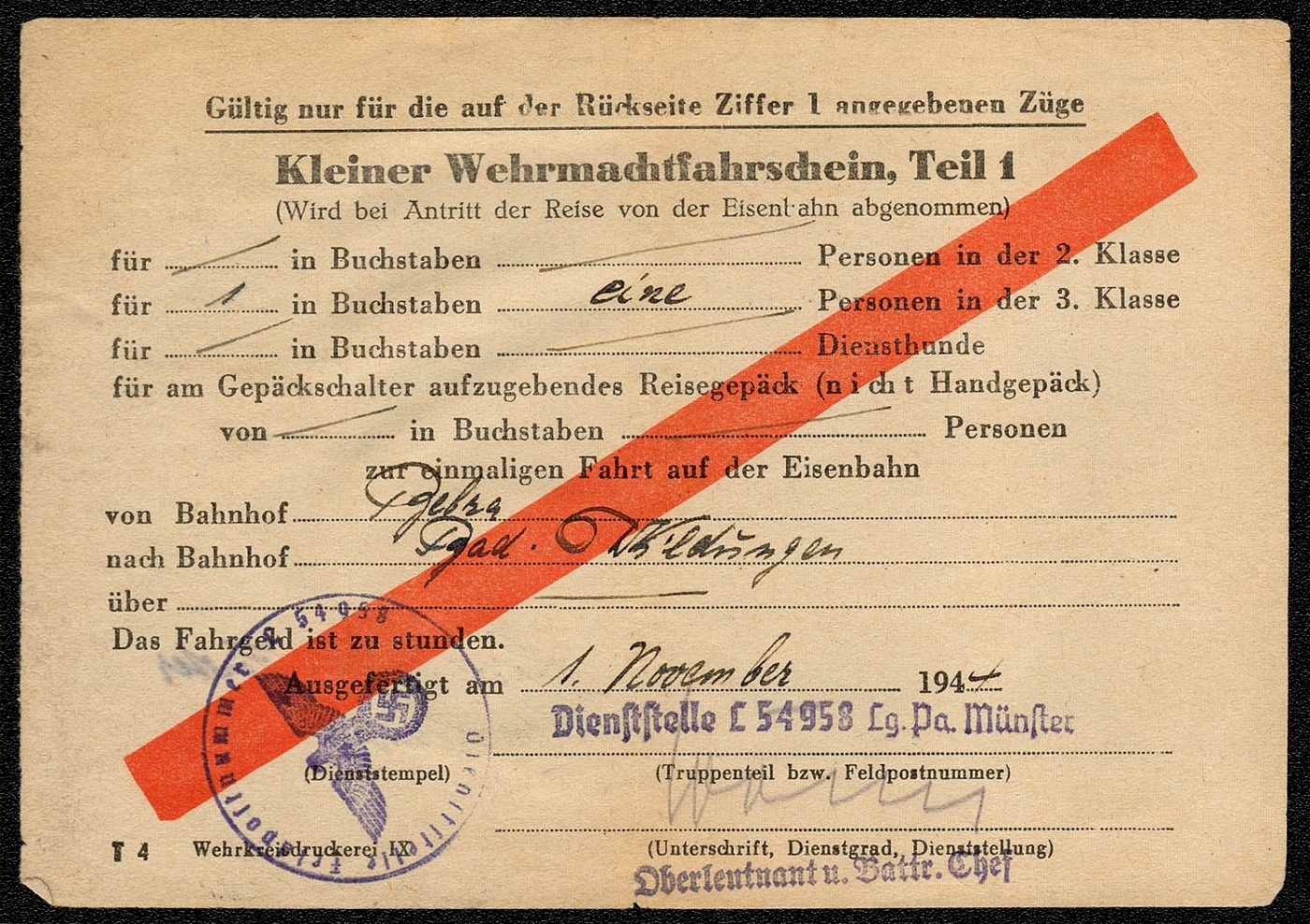
1944 Serviceman’s Rail Pass, Part One Good for one person in a restricted third class
Serviceman’s Rail Pass, Part One Good for one person in a restricted third class. 1 November 1944, Duty Station L 54958, Munster This pass could be used on the railroad, streetcar, cable railway, and motor coach by military personnel on a long trip.
Sold for:
$7
646
$5
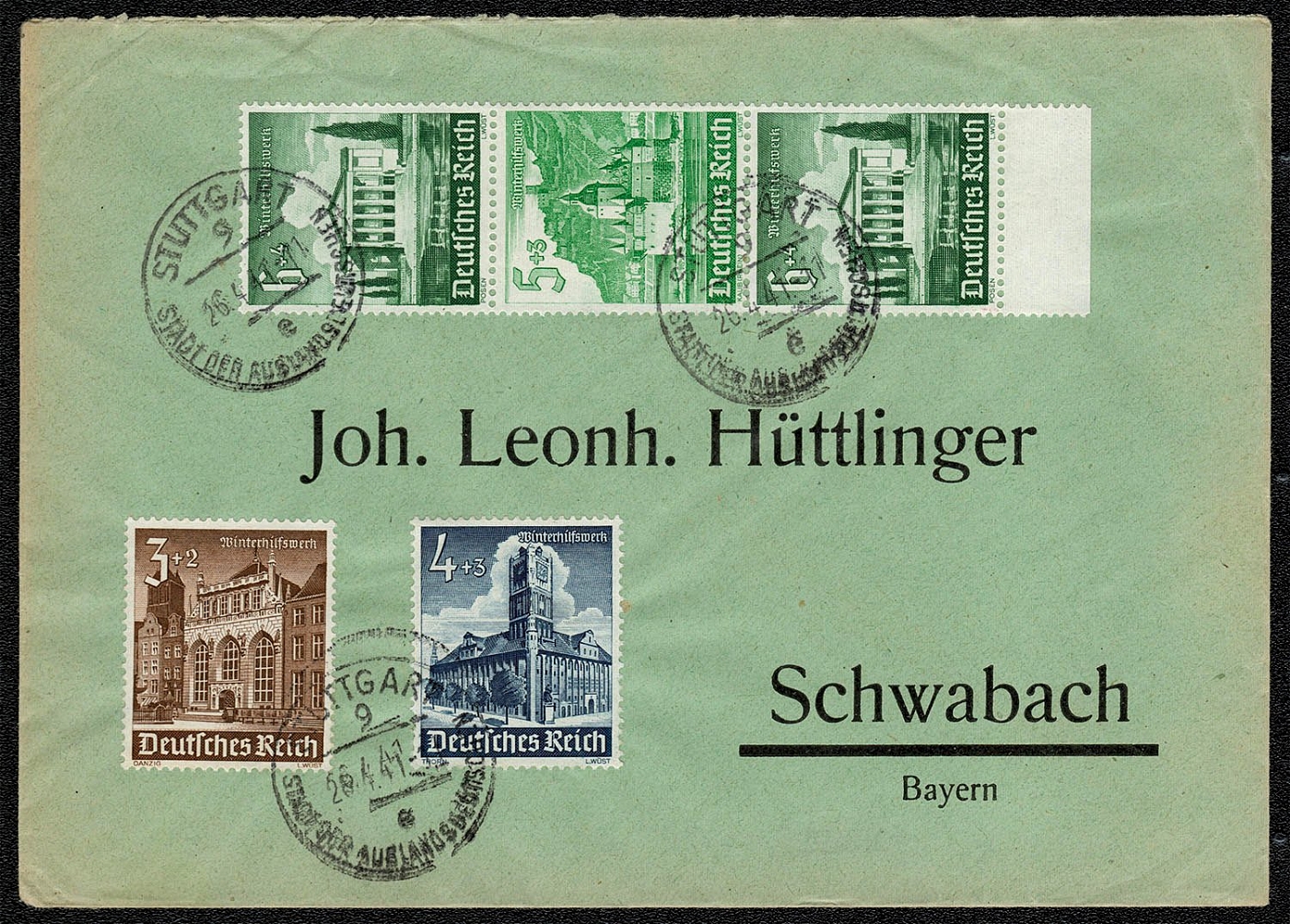
1941 Commercial cover posted 26 April in Stuttgart used se-tenant pairs of the 1940 Winter Aid - Buildings issue
1941 Commercial cover posted 26 April 1941 in Stuttgart used se-tenant pairs of the 1940 Winter Aid - Buildings issue
Sold for:
$5
647
$25
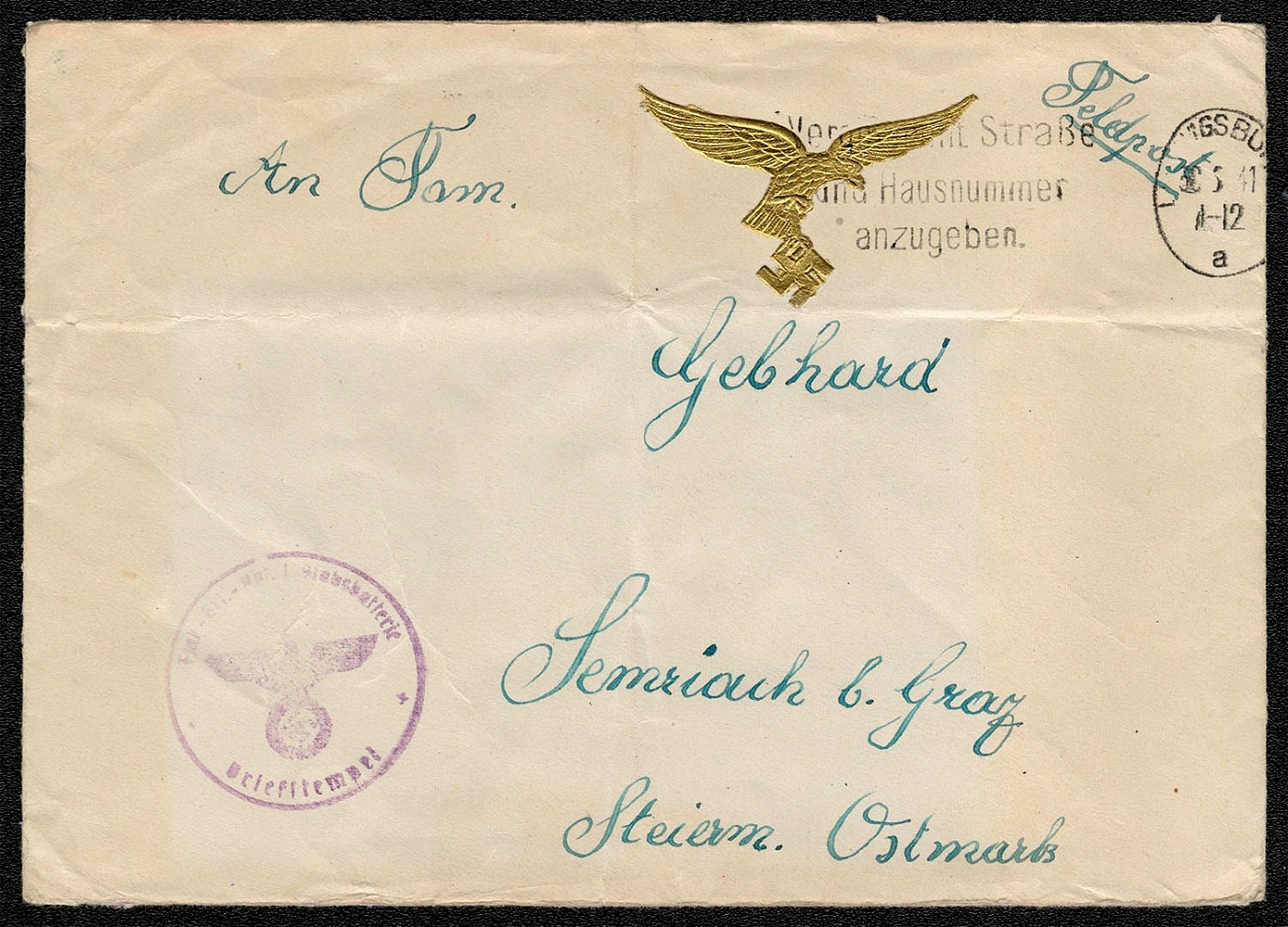
1941 Free franked Feldpost cover with a gold foil Luftwaffe label and a violet Anti-aircraft Battery Letter Stamp
Free franked Feldpost cover with a gold foil Luftwaffe Aufkleber (label) and a violet Stabsbatterie Flaken Briefstempel (Anti-aircraft Battery Letter Stamp) from Kanonier Franz Gebhard, Stabsbatterie Flaken Abt I. Posted 30 May 1941 in Ludwigsburg (Wurttemberg) to his family in Graz, Austria. The slogan cancel advises mailers to include the street and house number in addresses.
Sold for:
$25
648
$5
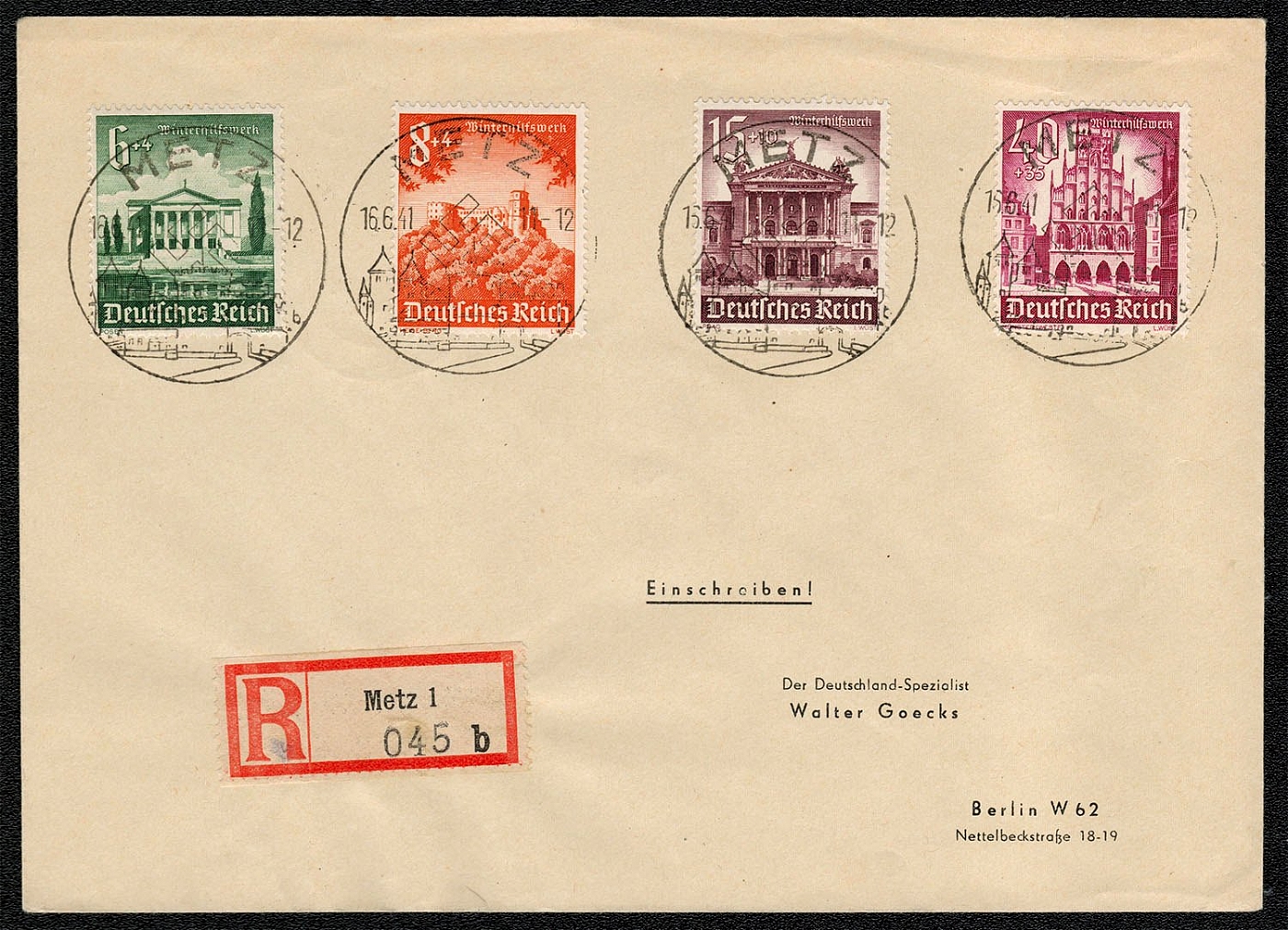
1941 Registered cover franked with four values of the Winterhilfe issue Mailed from Metz
Philatelically prepared and registered cover franked with four values of the 1940-41 Winterhilfe issue. Mailed from Metz on 16 June 1941. The Sonderstempel depicts a swastika over the German Gate and was in use from 1940 to 1941. Metz, the capital city of the Lorraine region is at the confluence of the Moselle and Seille rivers.
Sold for:
$5
649
$5
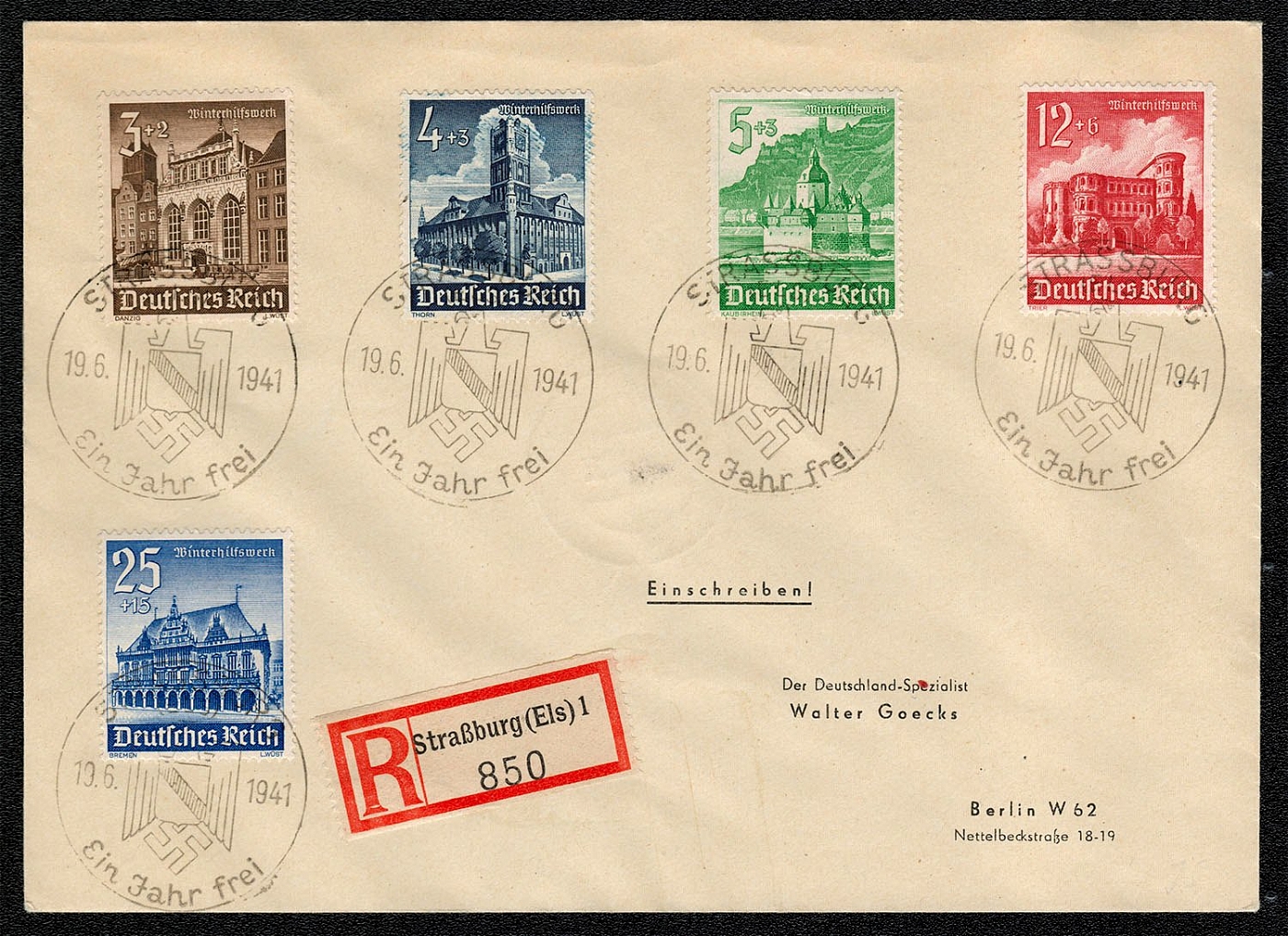
1941 Registered cover franked with five values of the Winterhilfe issue Mailed from Strassburg
Philatelically prepared and registered cover franked with five values of the 1940-41 Winterhilfe issue. Mailed from Strassburg (Els) 1 on 19 June 1941. The Sonderstempel depicts a heraldic eagle clutching a swastika, the city’s coat of arms, and the slogan “One Year Free!” It was in use only one day.
Sold for:
$5
650
$10
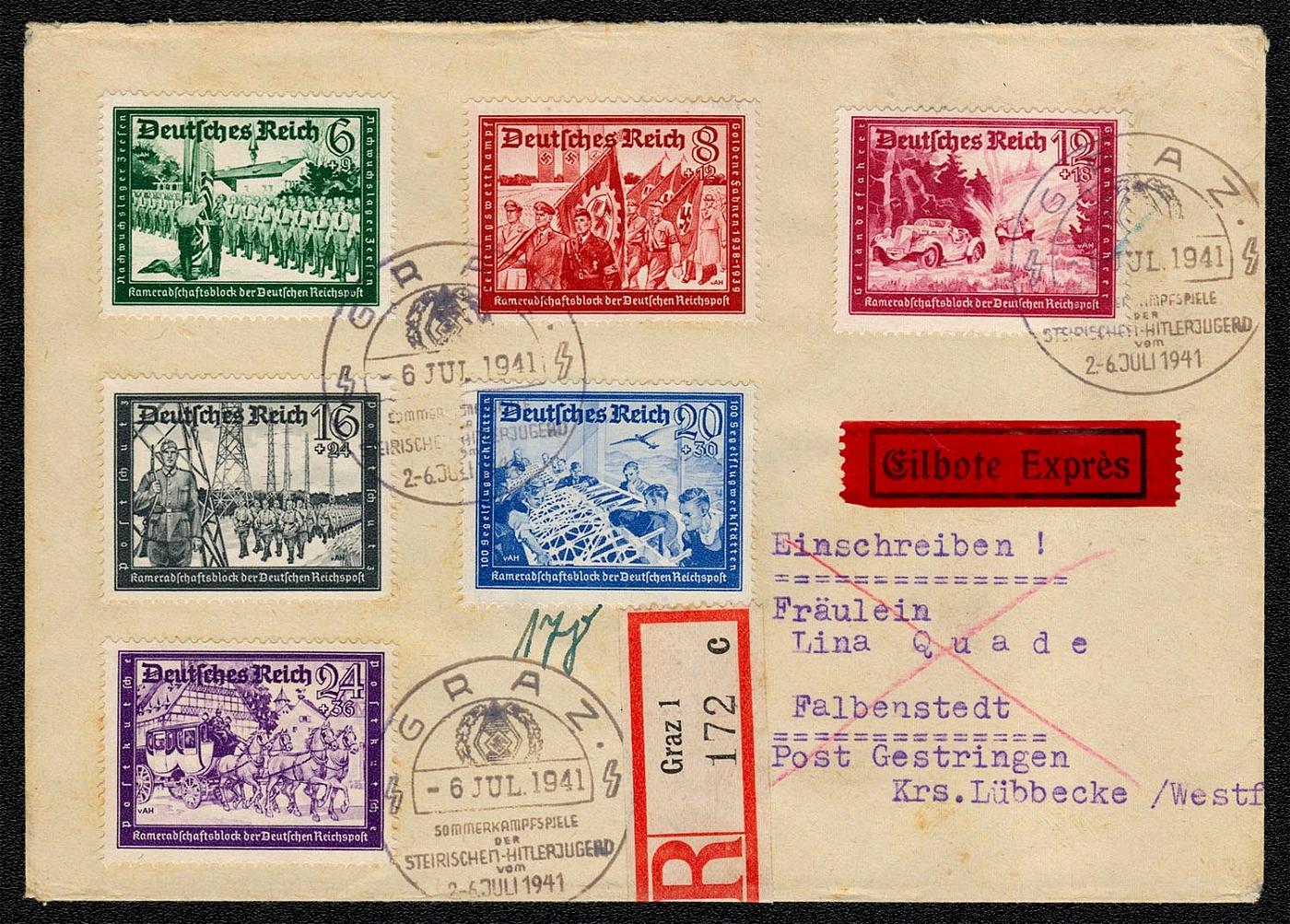
1941 Registered cover franked with the complete Reichspost Fellowship Charity Issue. Posted in Gra
Registered letter franked with the complete Reichspost Fellowship Charity Issue. Posted 6 July 1941 in Graz. The special cancellation commemorates the 2-6 July Summer War Games of the Steierschen Hitlerjugend Graz is one of the chief towns of Steiermark, a state in the mountainous part of central Austria.
Sold for:
$10
651
$95
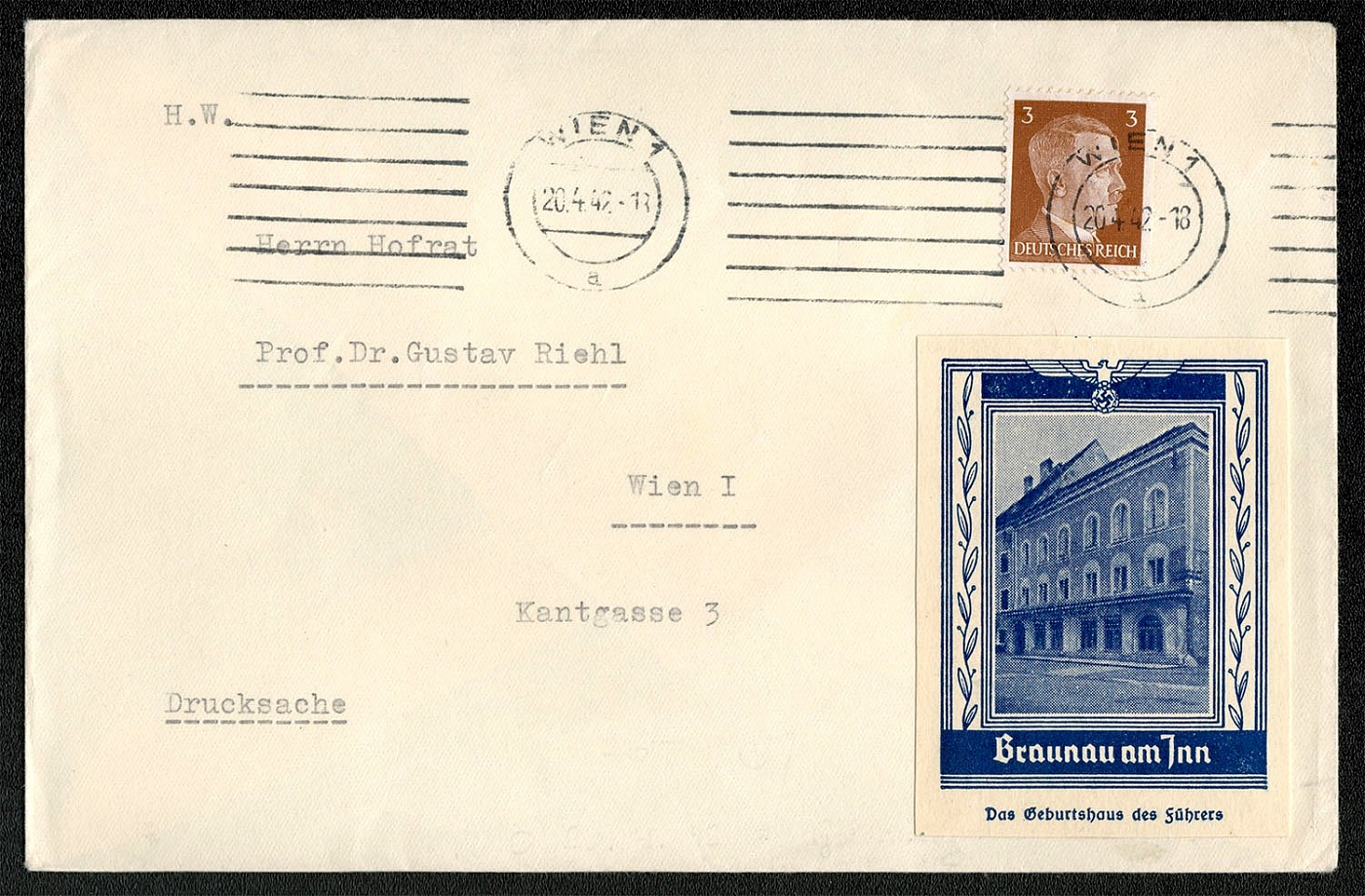
1942 Souvenir cover with commemorative label depicting The House In Which The Fuhrer Was Born in the Austria
Souvenir cover with commemorative label depicting The House In Which The Fuhrer Was Born in the Austrian town of Braunau am Inn. The cover was mailed 20 April 1942 from Postamt Wien 1 to Herrn Hof rat Prof.Dr.Gustav Riehl. Hofrat means “Privy Councilor” in German. A Privy Councilor is a legal advisor to an executive or governmental administrator. This cover is franked with a 3 Rpf stamp (Scott 507), the printed matter rate (Drucksache) for its weight. It was therefore considered in the same category as a post card by the Reichspost. Judging from the undisturbed gum, the envelope did not contain a written message.
Sold for:
$95
652
$10
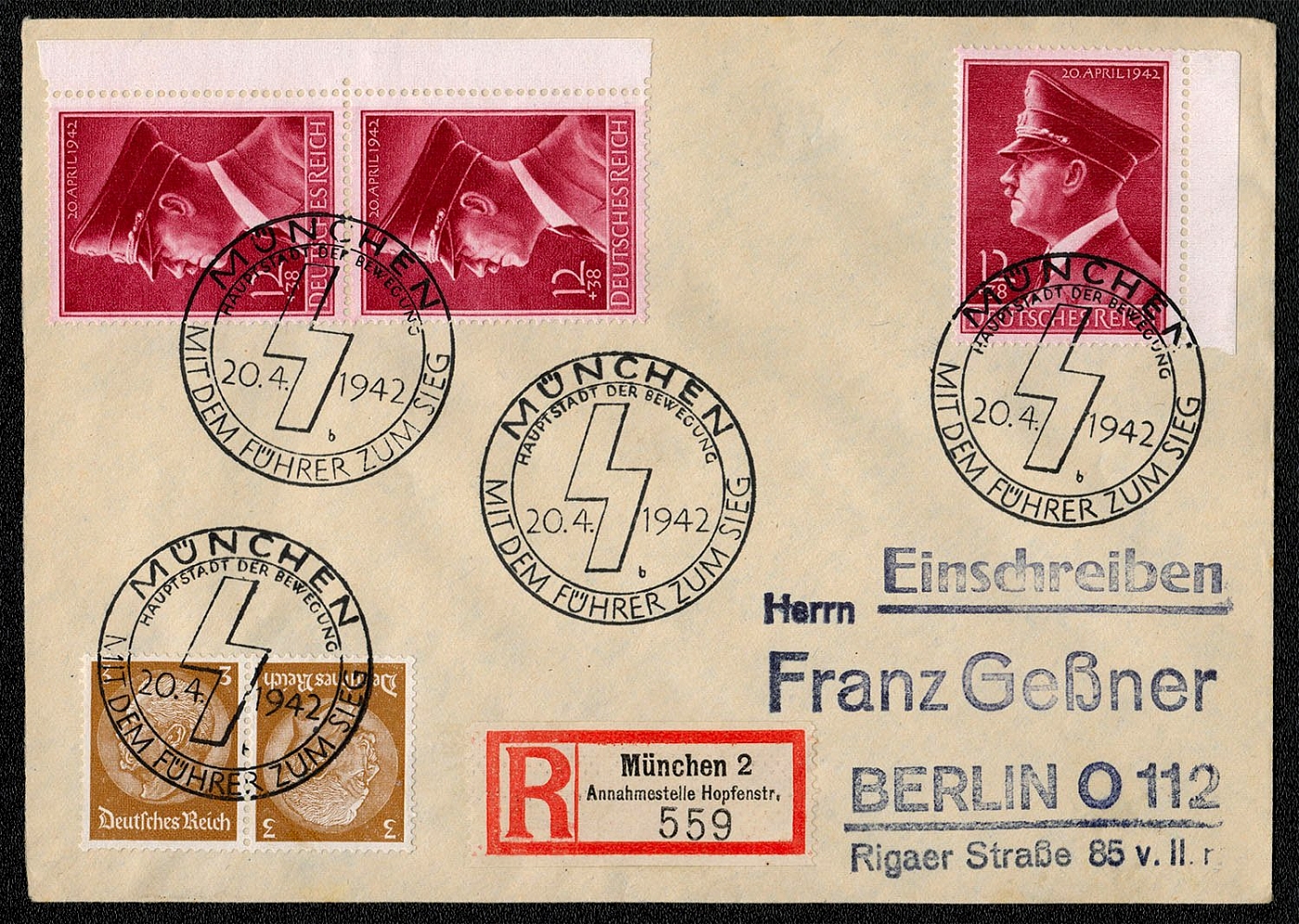
1942 Registered cover franked with a se-tenant pair of Sc 416, multiple copies of B203 and the commemorative cancel for Hitler’s birthday
Philatelically prepared, postally used registered cover franked with a se-tenant pair of Sc 416, multiple copies of B203 and the commemorative cancel for Hitler’s birthday. Mailed from Postamt Miinchen 2, Annahmestelle Hopfenstr. on 20 April 1942.
Sold for:
$10
653
$5
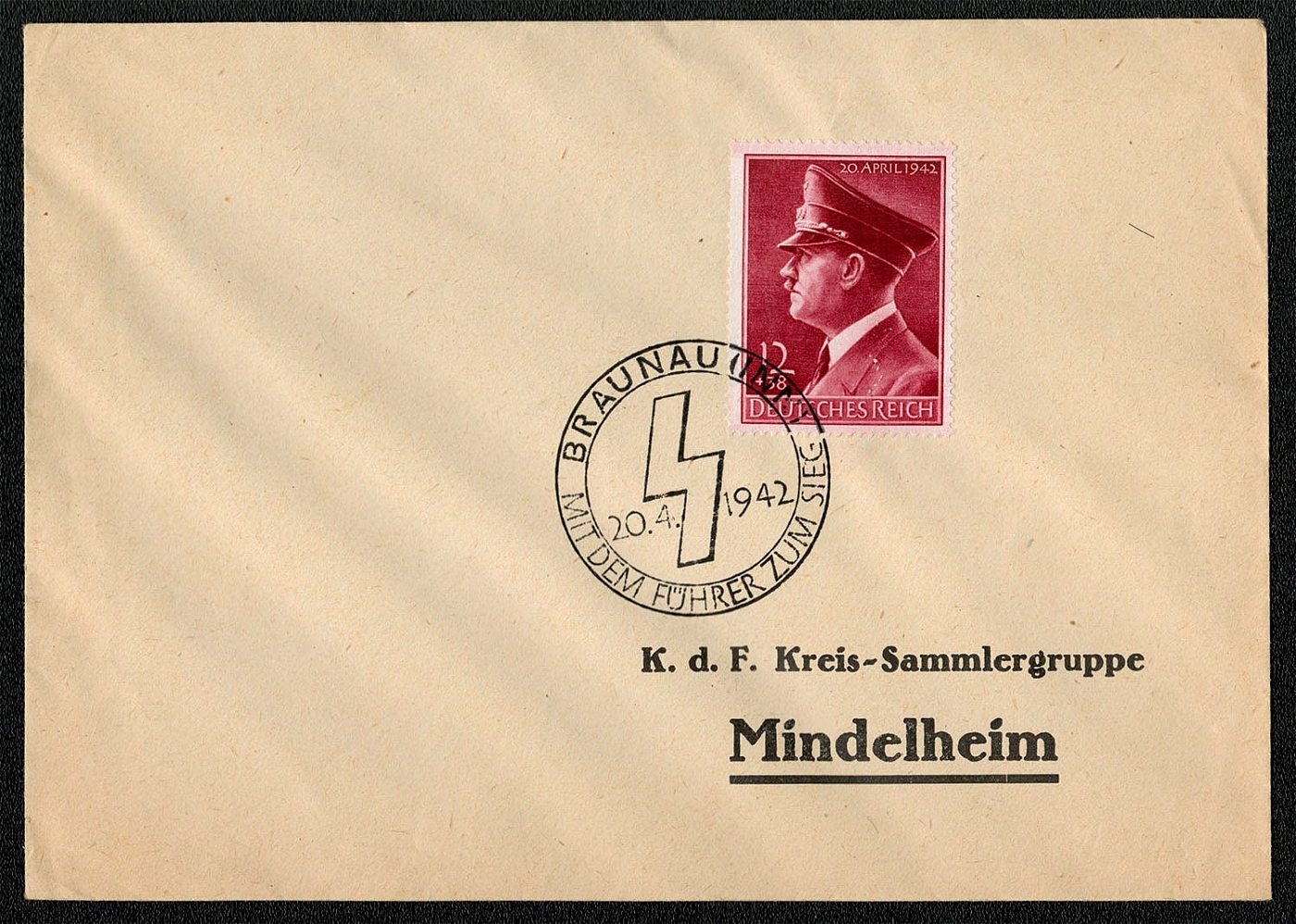
1942 Cover franked with Sc B203 and the commemorative cancel for Hitler’s birthday. Posted in Brannan
Cover franked with Sc B203 and the commemorative cancel for Hitler’s birthday. Posted in Brannan (Inn) on 20 April 1942. The cover is addressed to the Kraft durch Freude Mindelheim Kreis Collectors Group. Mindelheim, about 50 miles west of Miinchen is an old town (approximately 6000 inhabitants in 1942) on the Mindel River at an elevation of 1970 feet. In the parish church (1712) is the red marble tomb of Duke Ulrich of Teck (d. 1432) and his wife Ursula (d. 1429).
Sold for:
$5
654
$9
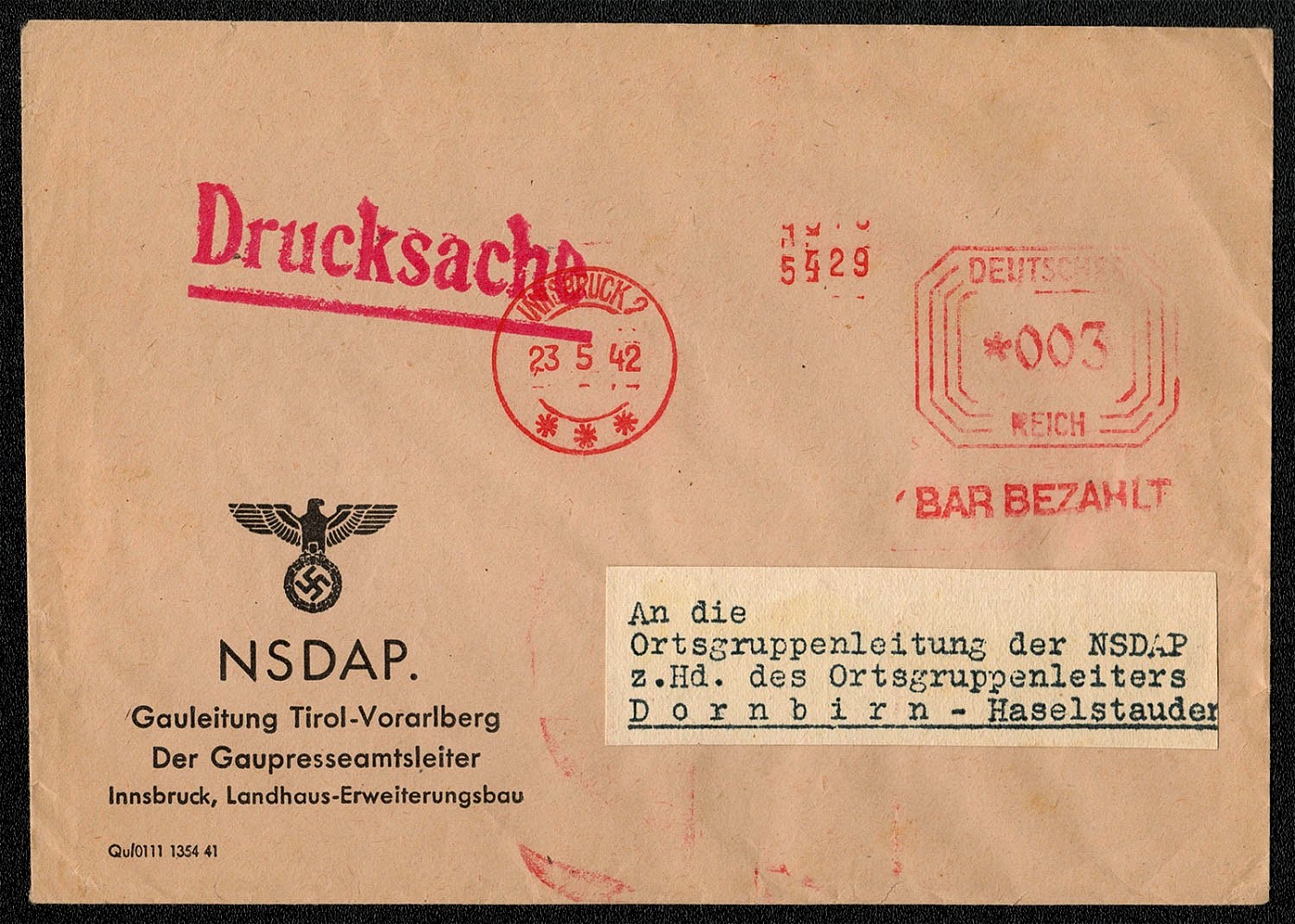
1942 Cover franked with postal meter imprint for 3 Rpf, paid in cash and posted in Innsbruck
Cover franked with postal meter imprint for 3 Rpf, the rate for printed matter (Drucksache), paid in cash (bar bezahlt), and posted in Innsbruck on 23 May 1942. The printed matter was from the NSDAP Administrative District (Gau) Press Office Leader for the Gauleitung Tirol-Voralberg (Austrian states). The office itself was located in the Innsbruck Country House Building Extension (Landhaus-Erweiterungbau). The cover is addressed to another NSDAP office in Dornbirn-Haselstauder, about 100 miles west of Innsbruck.
Sold for:
$9
655
$10
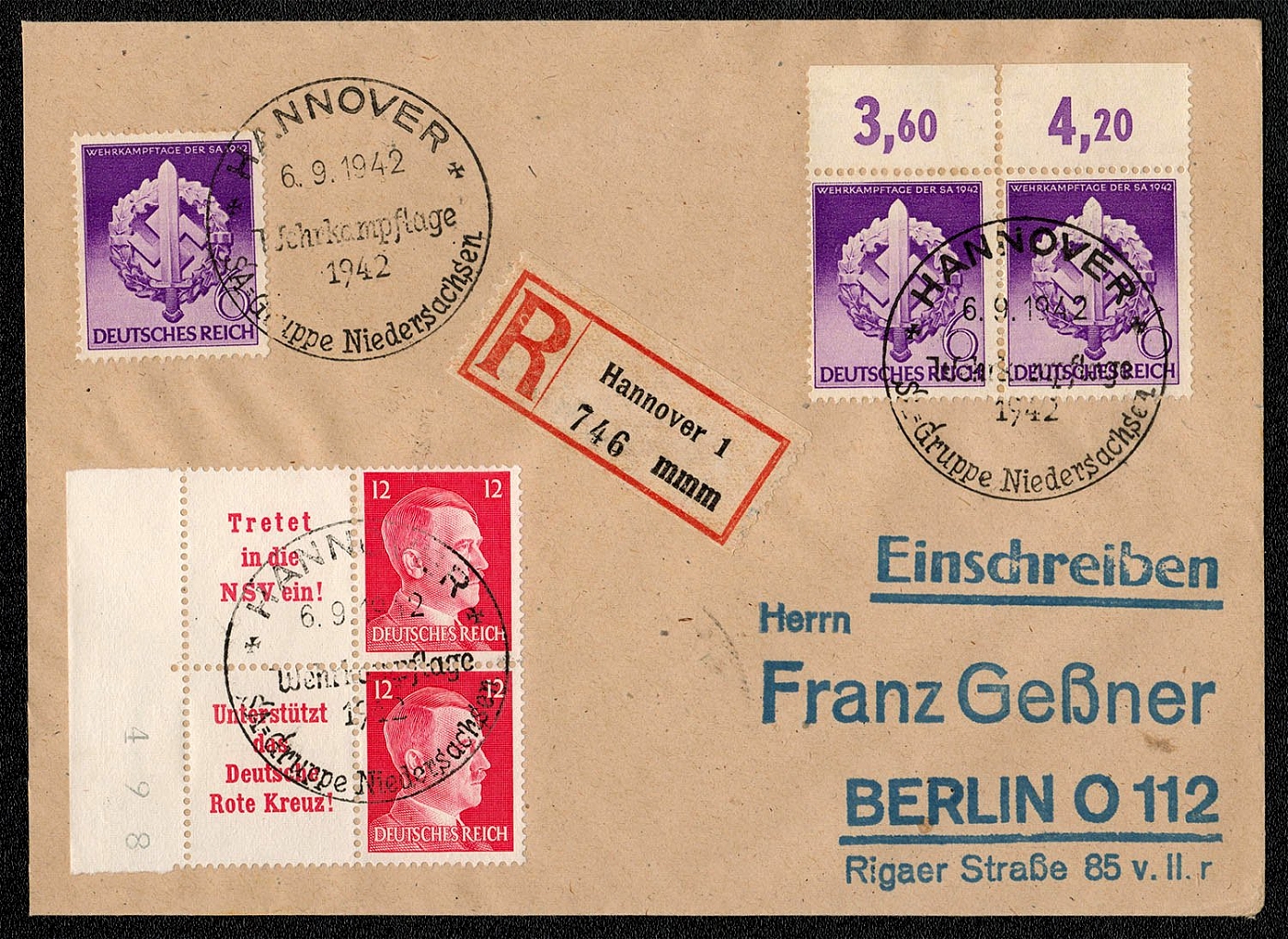
1942 Registered cover franked with multiple copies of Sc 528 commemorating the War Effort Day of the Sturmabteilung, and a pair of Sc 513
A philatelically prepared, but postally used, registered cover franked with multiple copies of Sc 528 commemorating the War Effort Day of the Sturmabteilung, and a pair of Sc 513. The latter stamps are engraved and were removed from sheets from which booklet panes are taken. The slogan “Tretet in die NSV ein!” translates as “Become a member of the NS Welfare Organization!” The slogan “Vnterstiitzt des Deutschen Rote Kreuz!” translates as “Support the German Red Cross!” Mailed from Hannover 1 on 6 September 1942 to Berlin 0112.
Sold for:
$10
656
$10
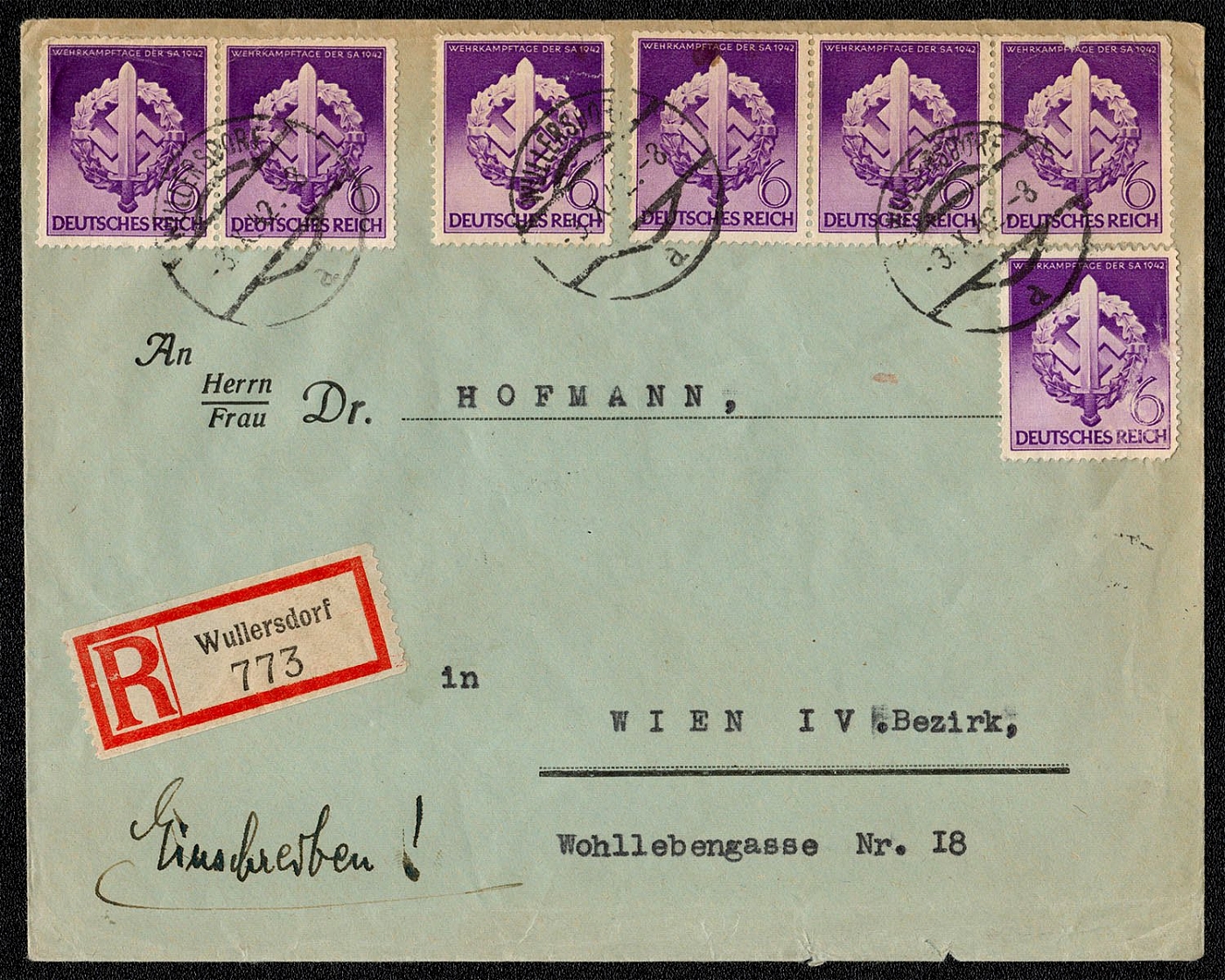
1942 Registered cover franked with multiple copies of Sc 528 which commemorates the War Effort Day of the Sturmabteilung
A postally used, registered cover, franked with multiple copies of Sc 528 which commemorates the War Effort Day of the Sturmabteilung. Mailed from Post Wullersdorf, Nieder-Donau on 3 October 1942 to Wien, District IV. Wullersdorf was a postal district in what from 1938 to 1945 was called Nieder-Donau (Lower Danube) near Wien. It is now known as the State of Niederosterreich (Lower Austria).
Sold for:
$10
657
$10
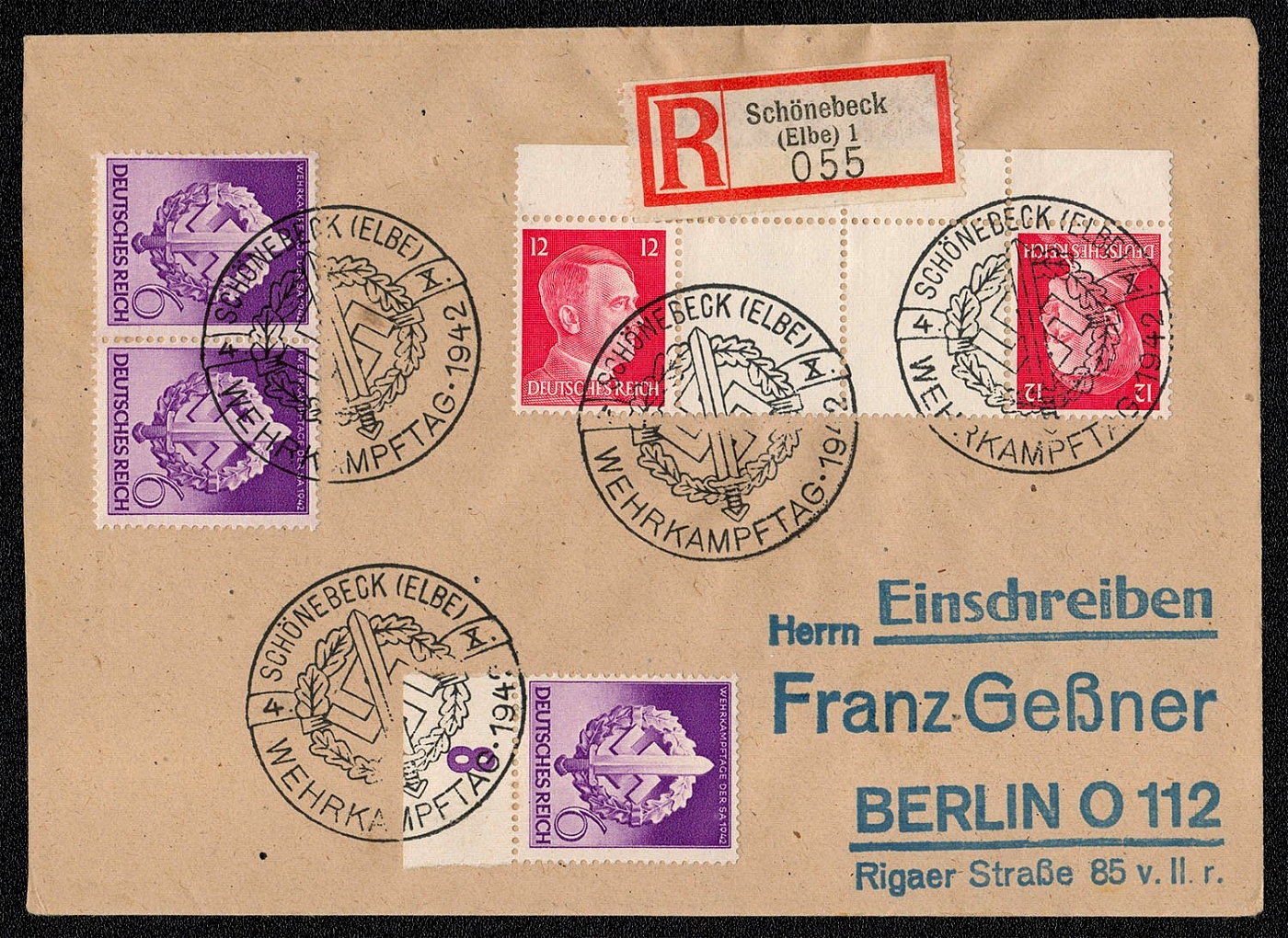
1942 Registered cover franked with multiple copies of Sc 528 commemorating the War Effort Day of the Sturmabteilung, and a pair of Sc 513
A philatelically prepared, but postally used, registered cover franked with multiple copies of Sc 528 commemorating the War Effort Day of the Sturmabteilung, and a pair of Sc 513. The latter stamps are engraved and believed to be from a booklet pane. Mailed from Schonebeck (Elbe) 1 on 4 October 1942 to Berlin 0112. Schonebeck on the Elbe River is just south of Magdeburg in northern Germany. It was a manufacturing town of approximately 20,000 inhabitants in 1942.
Sold for:
$10
658
$35
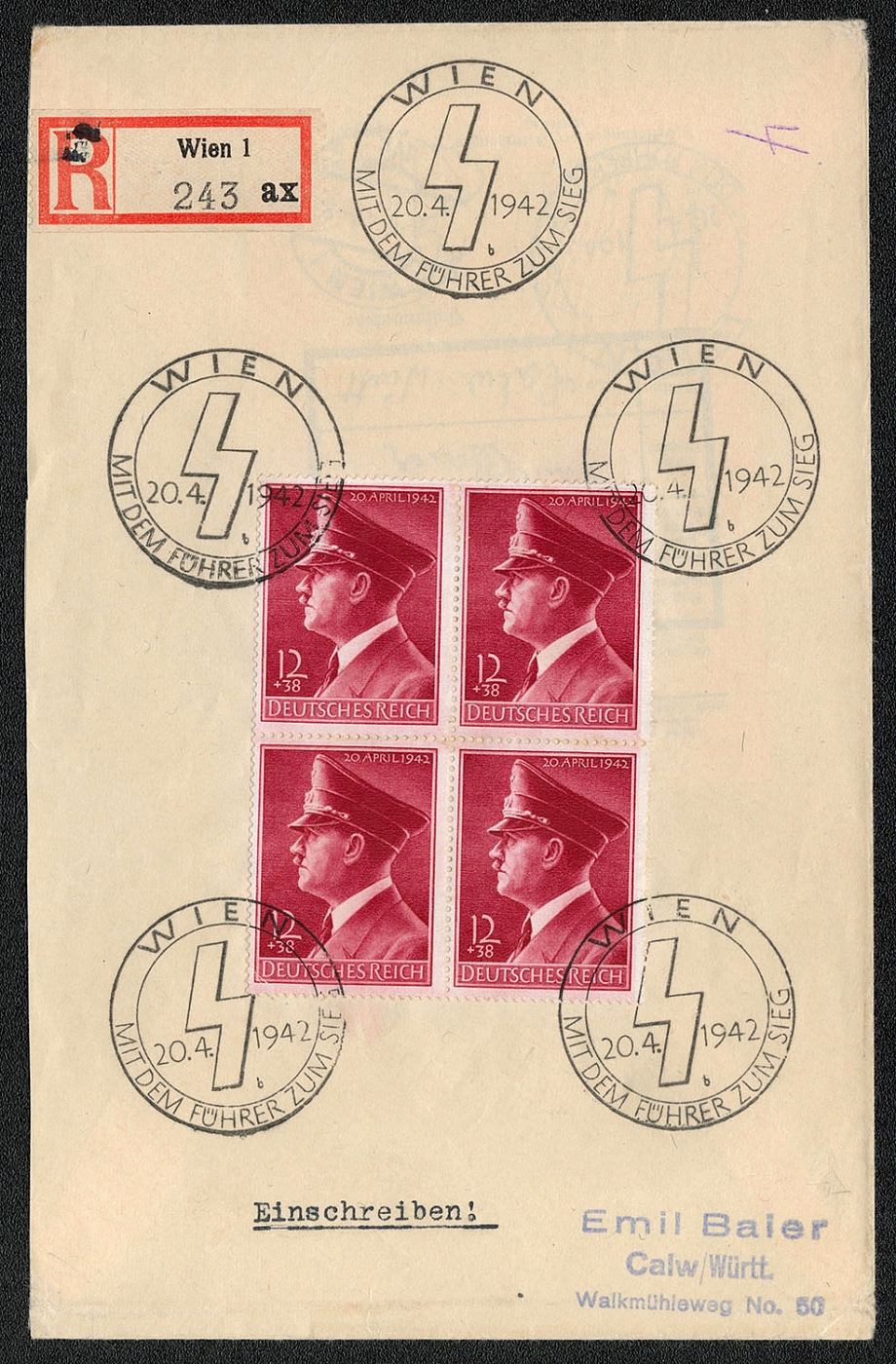
1942 Registered cover franked with block of four B203 and the commemorative cancel for Hitler’s birthday
1942 Registered cover franked with block of four B203 and the commemorative cancel for Hitler’s birthday
Sold for:
$35
659
-
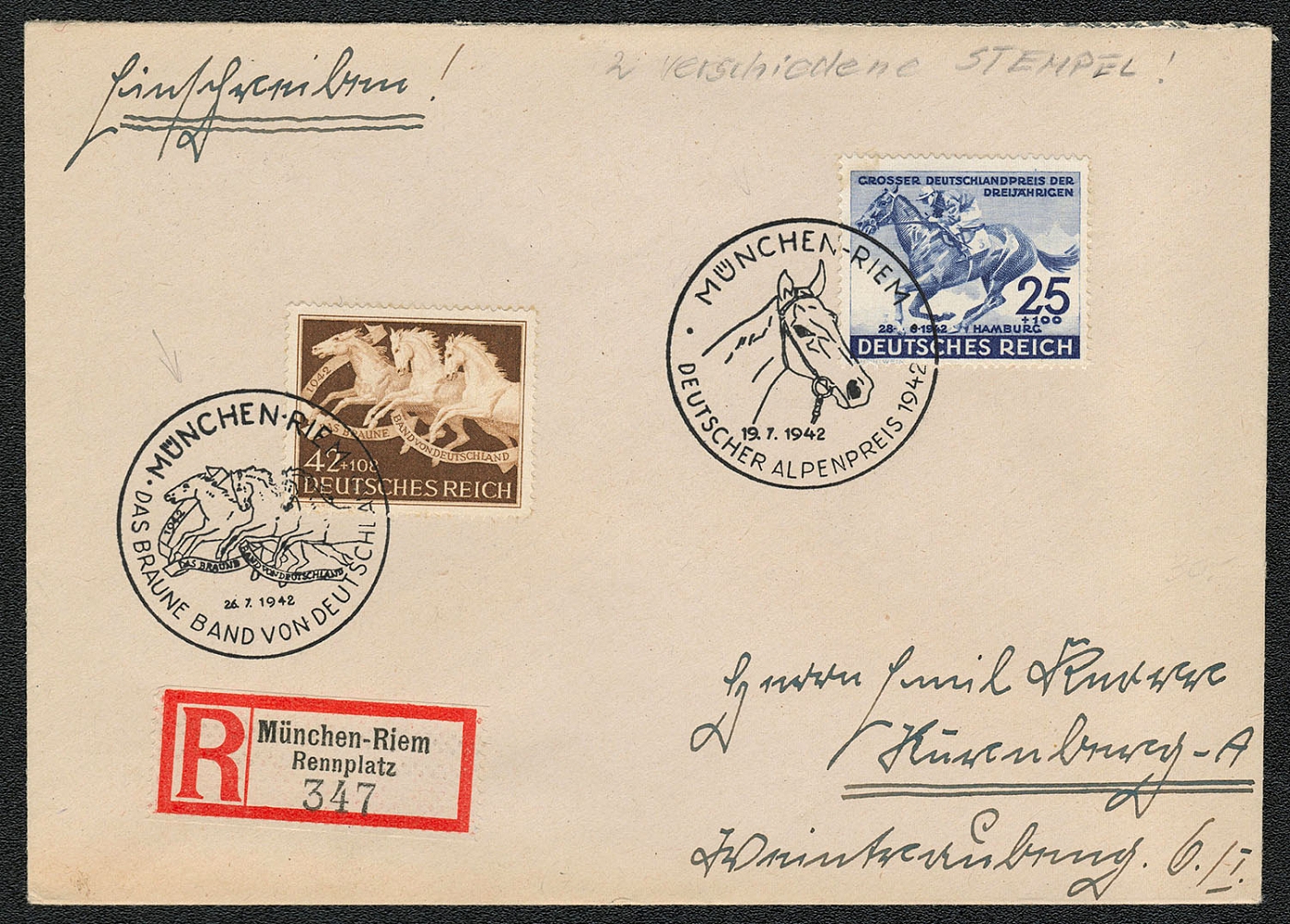
1942 Registered cover Posted at the Munich-Riem Race Track
1942 Registered cover Posted at the Munich-Riem Race Track
Unsold
660
$5
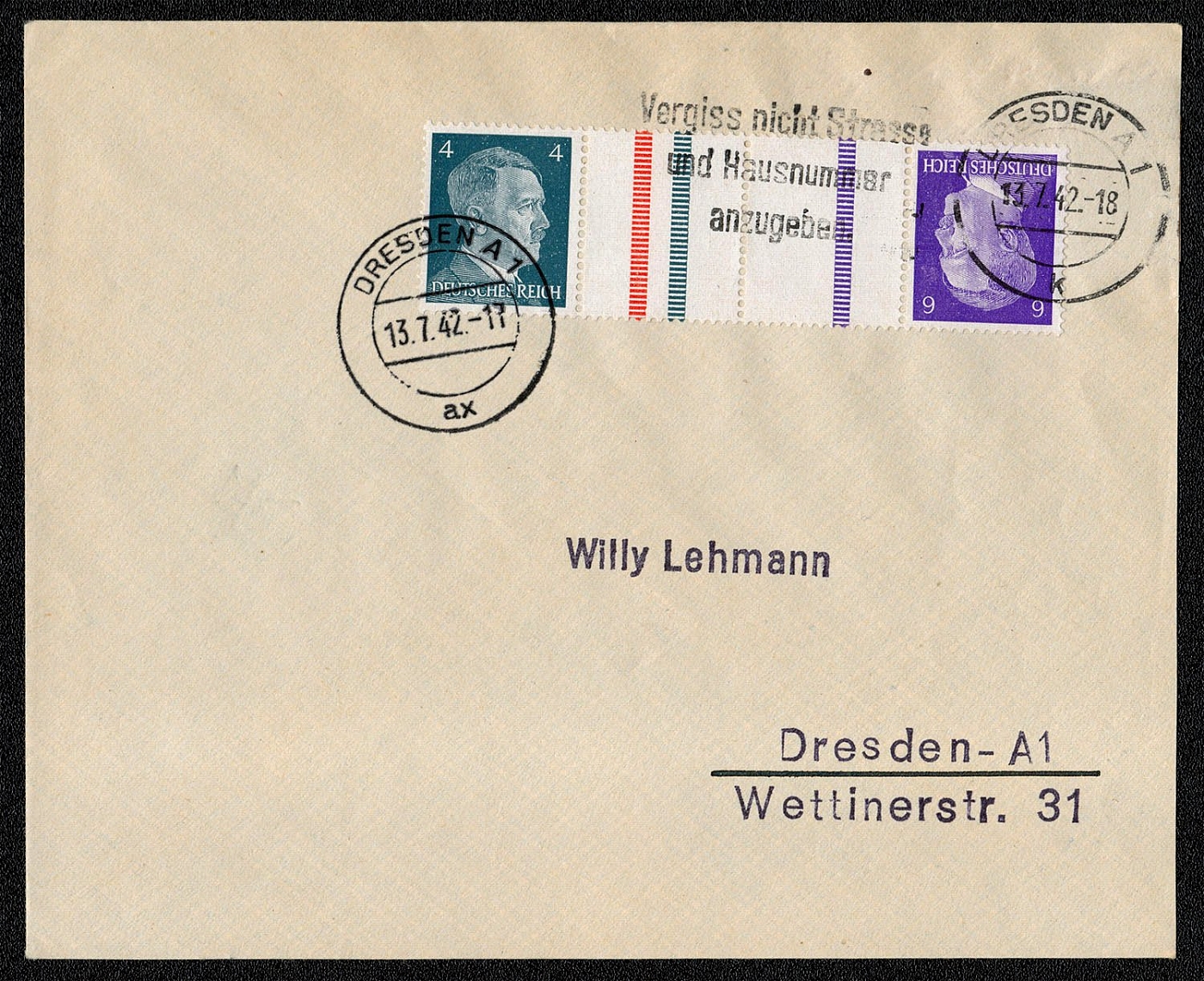
1942 Сover franked with Sc 508 and 510
A philatelically prepared, but postally used cover franked with Sc 508 and 510. The stamps were printed by photogravure and removed from sheets from which booklet panes are taken. According to Alf Harper’s Philately of the Third Reich, the sheets were only available from the philatelic window at the Berlin central post office. The cover, however, was mailed from Dresden - Al. The postal slogan advises patrons not to forget to include the street and house number in the address. Mailed on 13 July 1942.
Sold for:
$5
661
$5
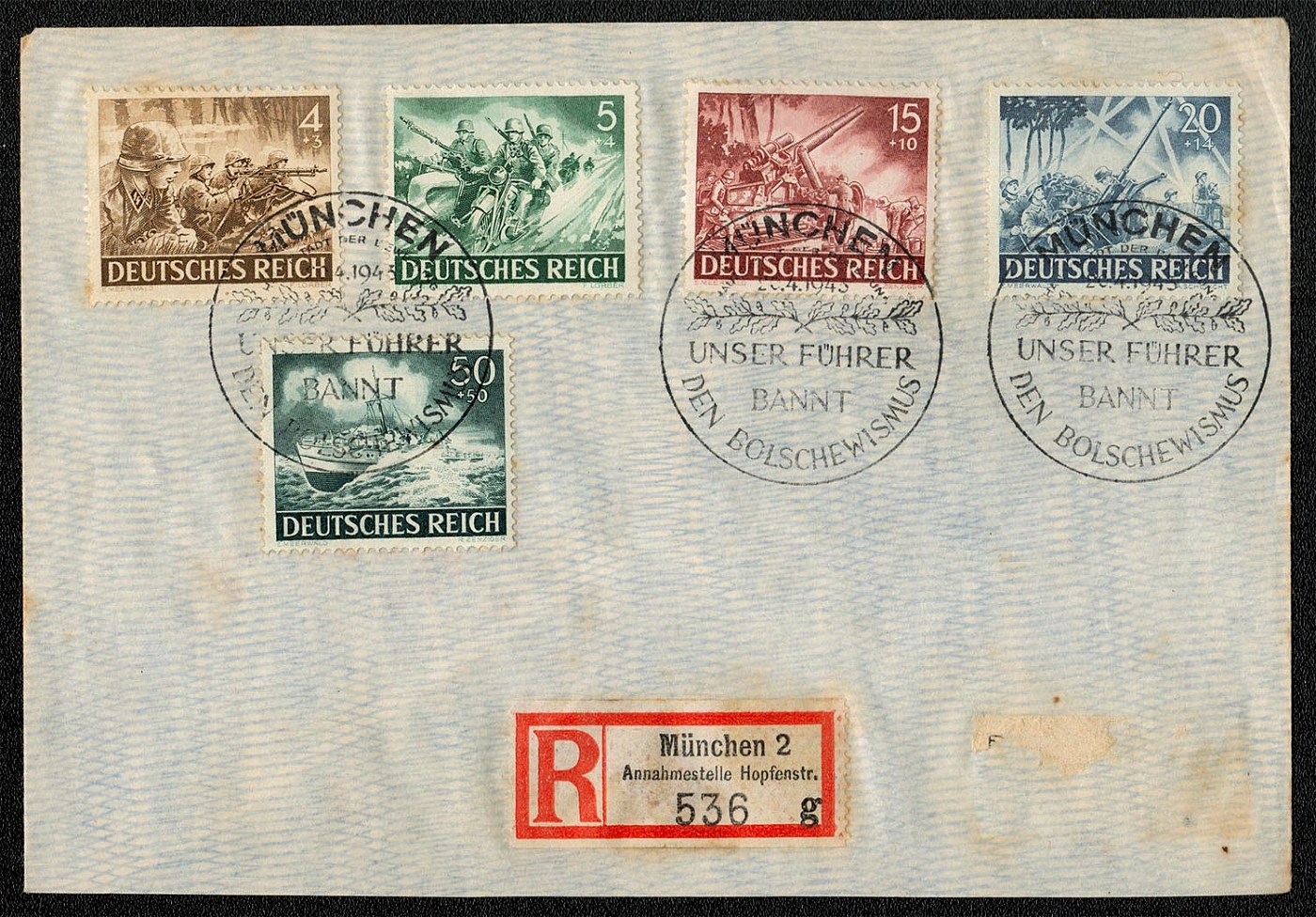
1943 The Heroes Memorial and Army Day issue on a postally used Registered cover
"Several values of the Heroes Memorial and Army Day issue (Scott Nos. B219, 220, 224, 225 and 229) on a postally used cover dated 20 April 1943, and cancelled in Munchen. The cancellation Unser Fiihrer Bannt Den Bolschewismus (Our Fiihrer bans Bolshevism) was used only on this date (Hitler’s 54""' birthday), and only in the cities of Amsterdam, Berlin, Braunau, Munchen, Nurnberg and Wien."
Sold for:
$5
662
$9
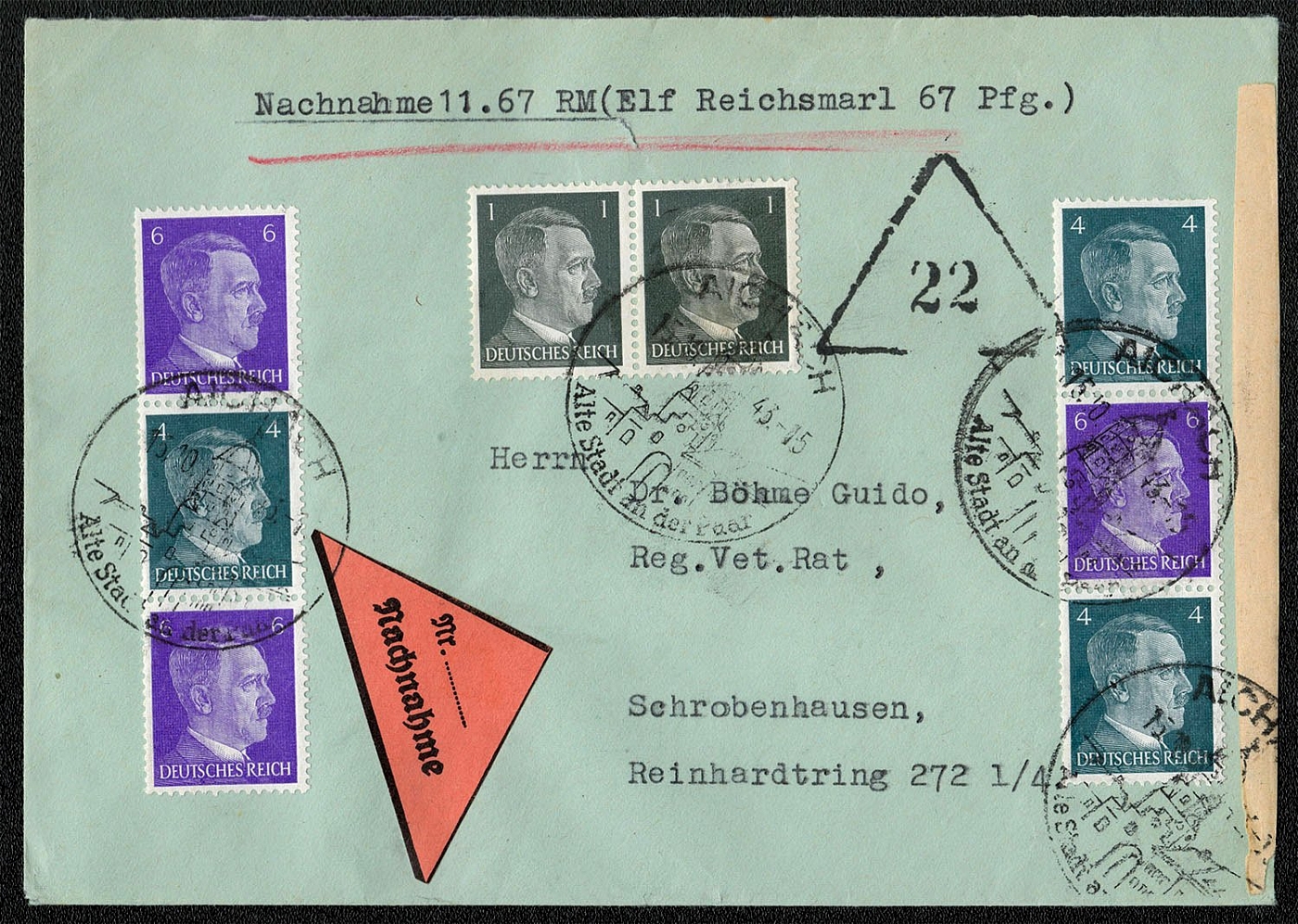
1943 Cover franked with Mi S291 and S292 se-tenant multiples from automat rolls
A postally used cover franked with Mi S291 and S292 se-tenant multiples from automat rolls. The triangle with the number 22 represents a COD letter and the amount to be collected is typed in at 11.67 Reichsmark. Mailed 15 October 1943 in Aichach bei Augsburg (Bayern) whose publicity cancellation: AICHACH Alte Stadt an der Paar pictorially represents the town’s late-Gothic parish church (early 16lh century), and two town gates.
Sold for:
$9
663
-
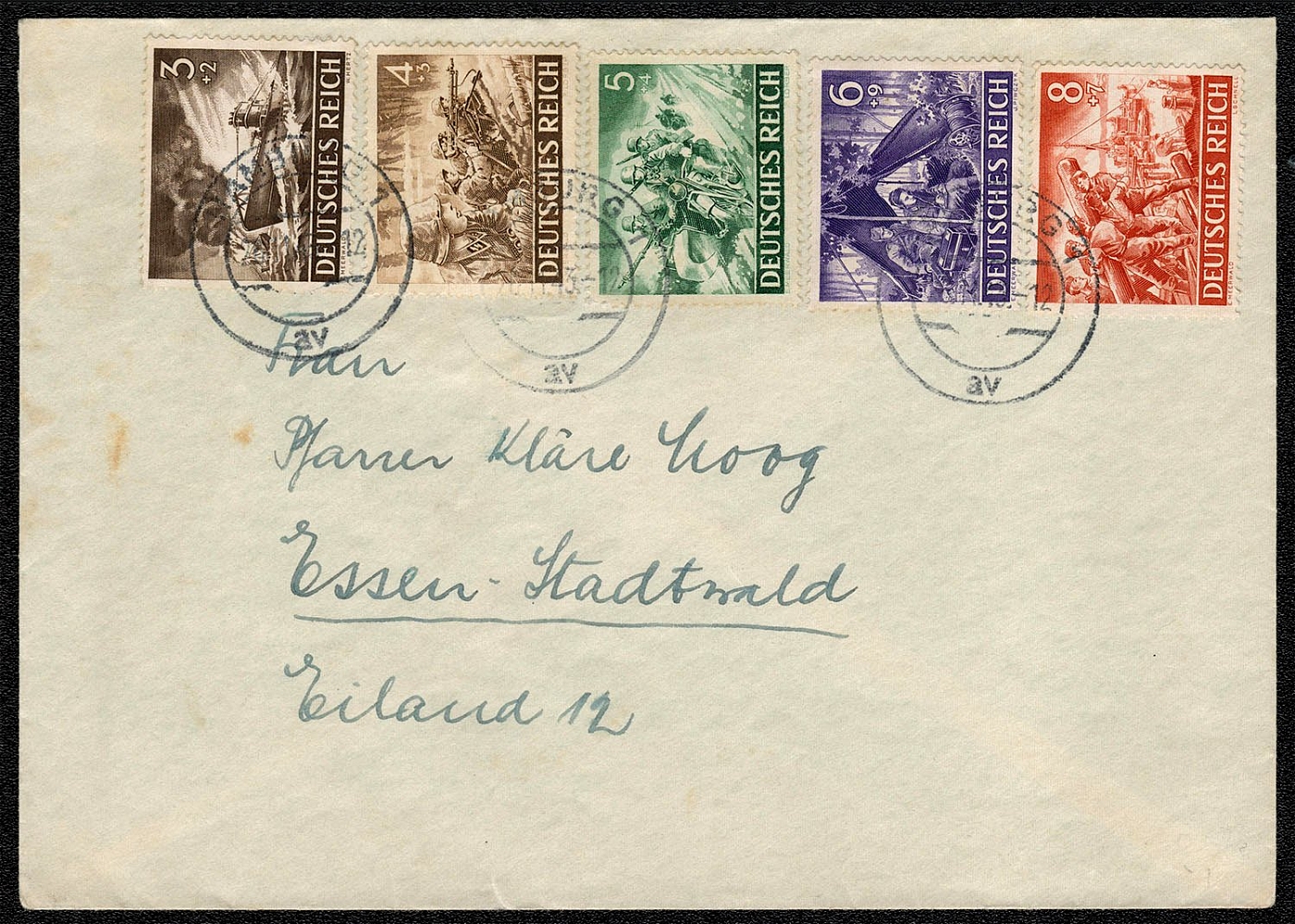
1943 The Heroes Memorial and Army Day issue on a postally used cover
Armed Forces Day and War Heroes Day, 1943 Cover franked with Scott B218-22 and mailed from Hamburg 1 26 November 1943
Unsold
664
$5
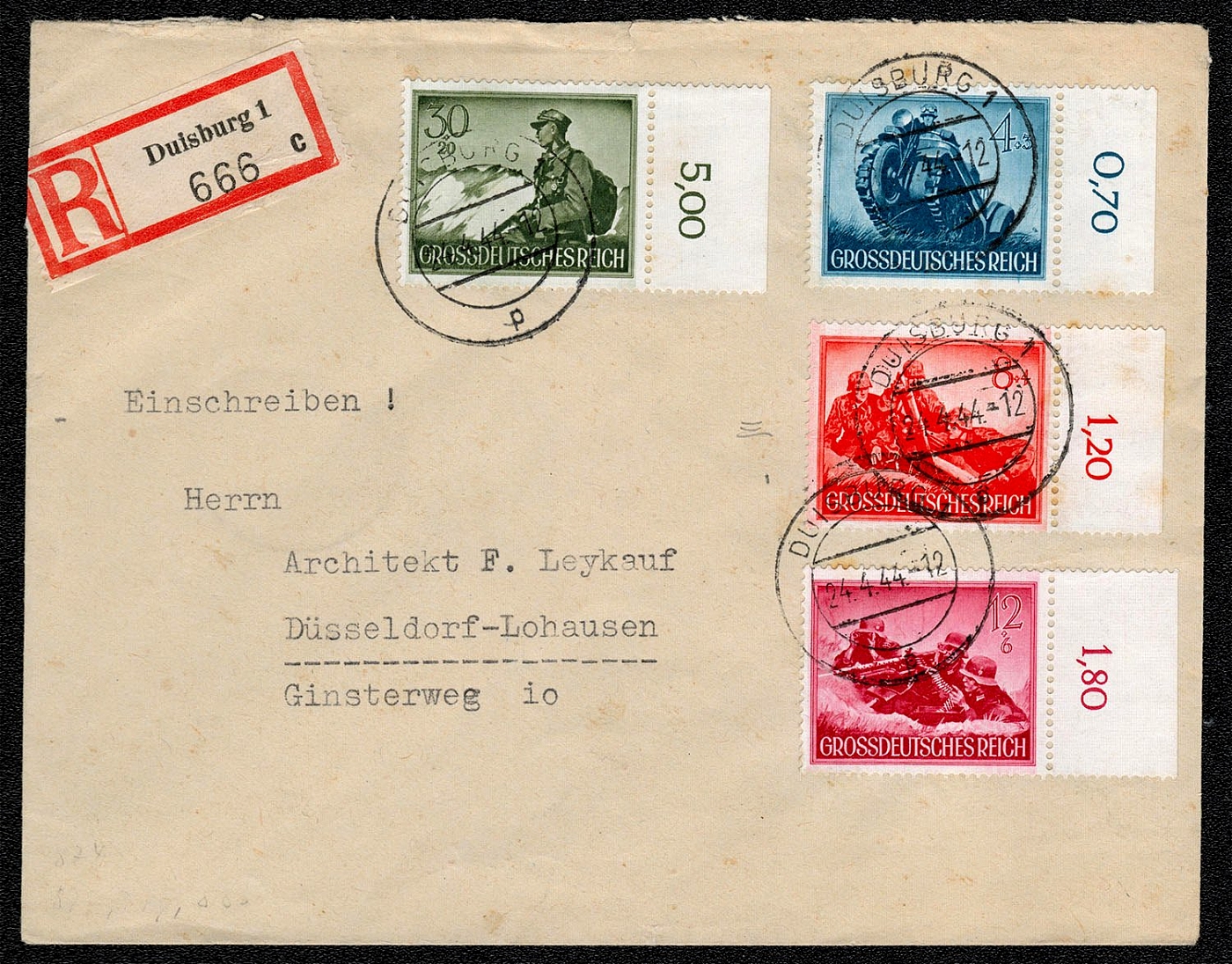
1944 Registered cover franked with Scott B258, B261, B263 and B269 of the 1944 War Heroes Day set
Philatelically prepared, but postally used, registered cover franked with Scott B258, B261, B263 and B269 of the 1944 War Heroes Day set. Mailed to Diisseldorf-Lohausen from Duisburg 1 24 April 1944 Duisburg, with a prewar population of approximately 280,000, lies on the right bank of the Lower Rhine. Located in the vicinity of the Ruhr coal field, it was the chief place of exportation of coke, coal and wrought iron of every kind. The imports included iron ore, chiefly from Sweden and Spain. The combined harbors of the area formed the largest river port in Europe, if not the world, (water area 460 acres).
Sold for:
$5
665
-
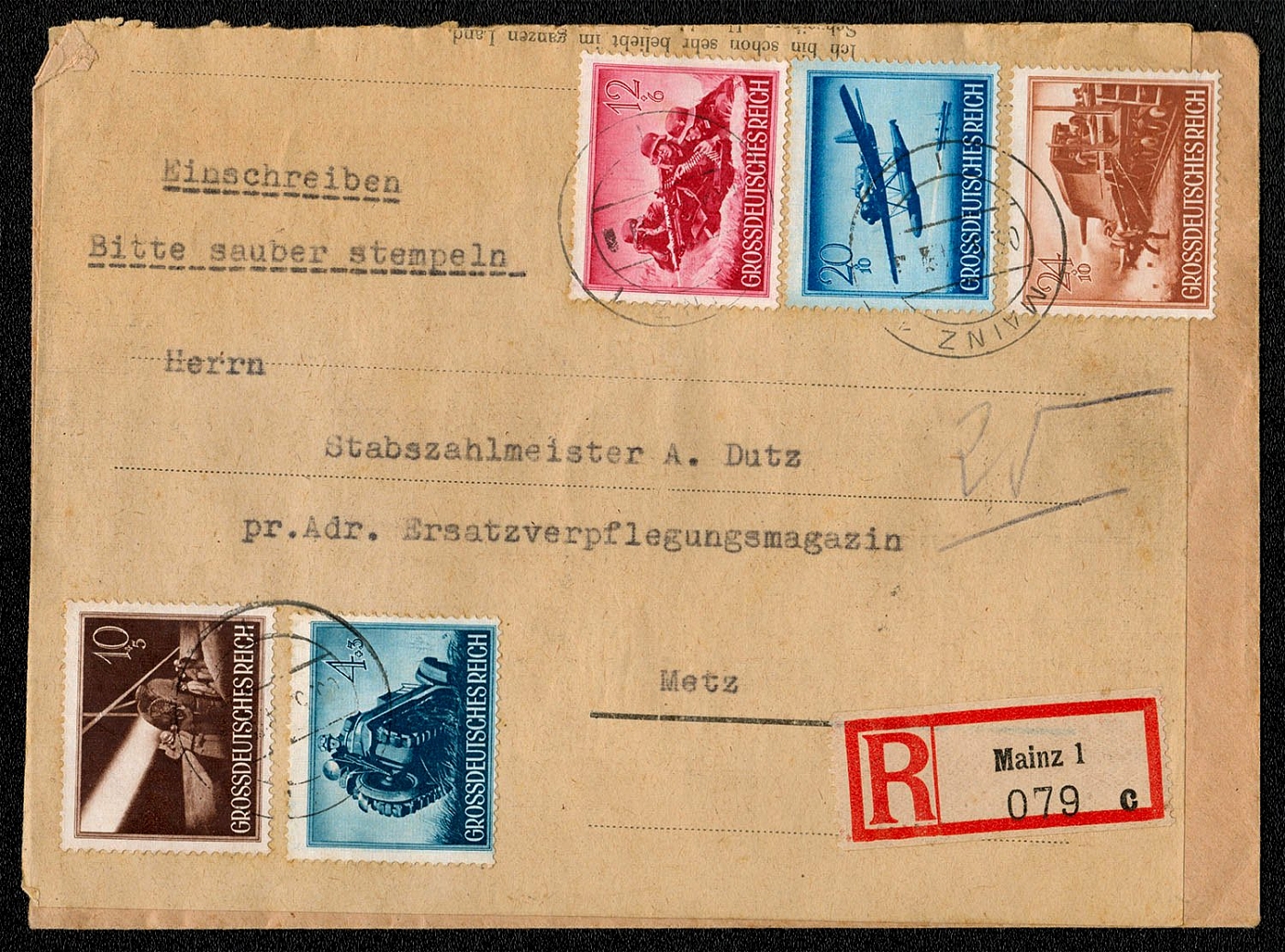
1944 Registered cover franked with Sc B258, B262, B263, B266 and B267 of the 1944 War Heroes Day set
Philatelically prepared cover franked with five values of the 1944 Hero Memorial Day set (Sc B258, B262, B263, B266 and B267). The sender asked the postal clerk to “Please stamp neatly.” Posted in Mainz, 3 May 1944 and addressed to Staff Paymaster A. Dutz at the Metz Ration Depot. § Mainz is in southwestern Germany a few miles east of Frankfort am Main at 270 feet above sea level. It is situated on the left bank of the Rhine, opposite and below the influx of the Main. Historically, it was the first ecclesiastical city of Germany, and long known for its wines and high quality leather goods. During the Third Reich, Mainz was in the State of Hesse with a Statthalter (governor) appointed by Hitler in 1935. The population in 1940 numbered 143,000, but is unknown for 1944.
Unsold
666
-
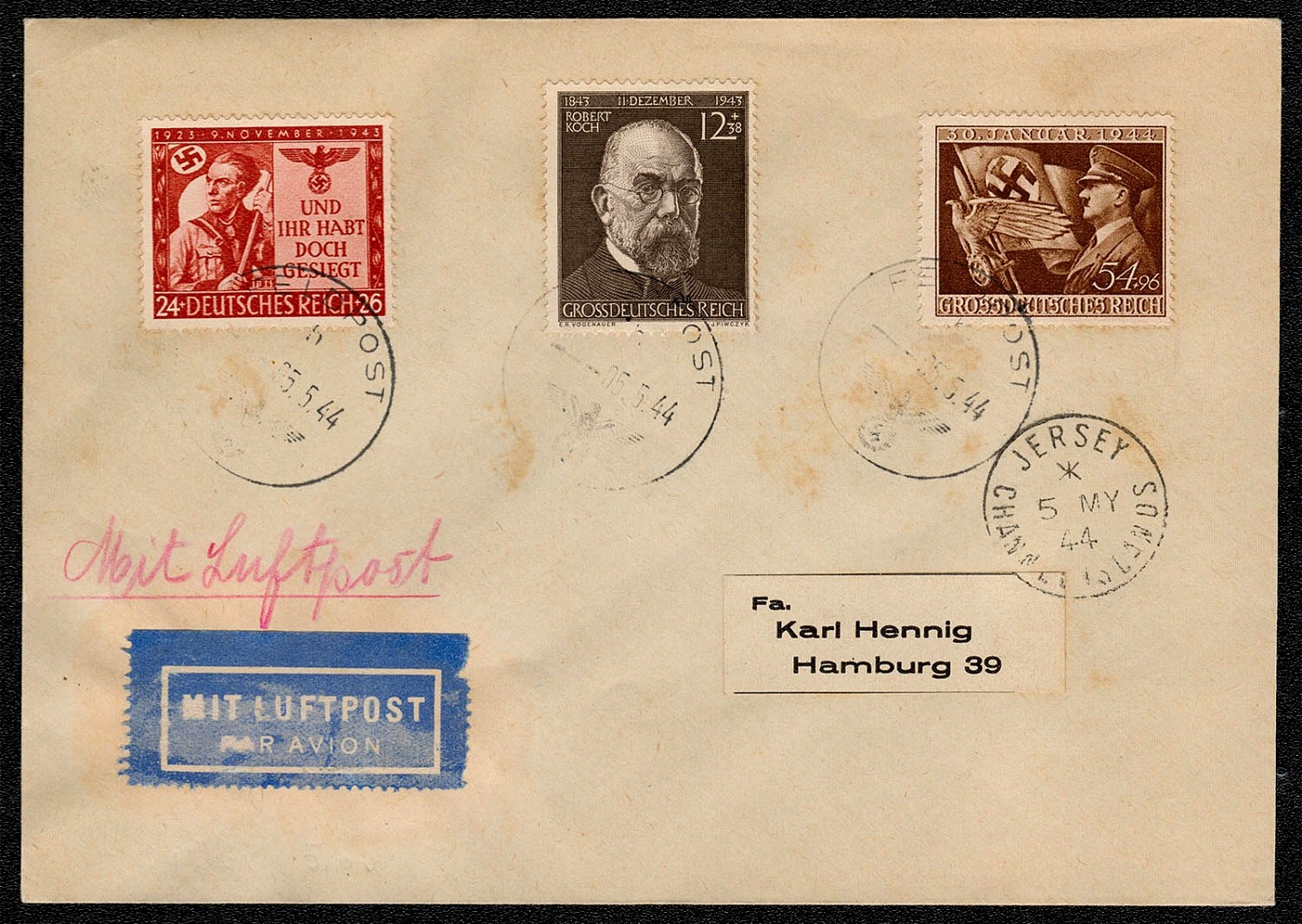
1944 Cover franked with Sc B250, B251 and B252 posted in the Jersey Channel Islands and sent through the Feldpost
A philatelically prepared (but postally used) cover franked with Sc B250, B251 and B252 posted in the Jersey Channel Islands and sent through the Feldpost on 5 May 1944.
Unsold
667
$5
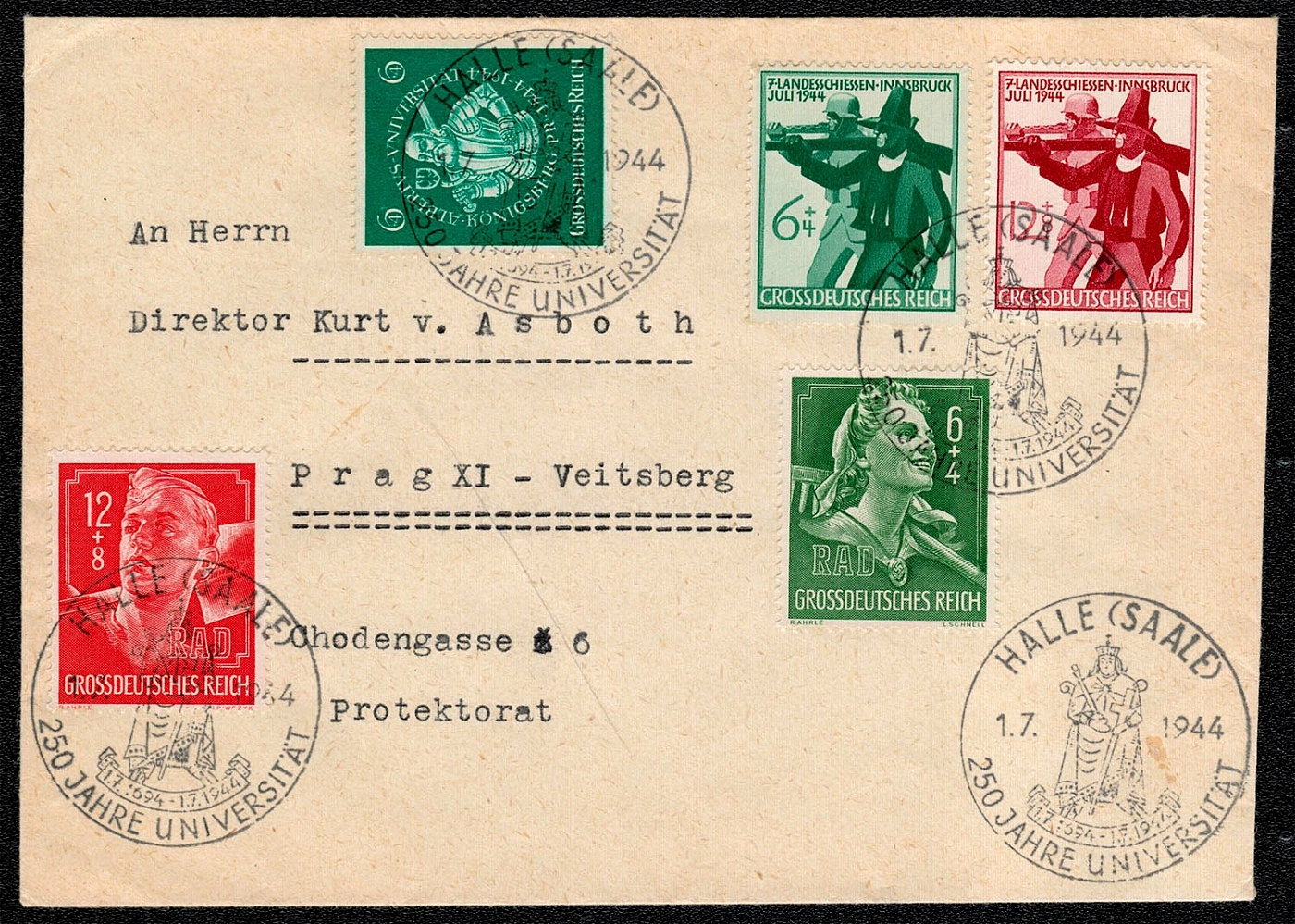
1944 Cover franked with Scott Nos. B278-9, B280 and B281-2. The cancellation commemorates the 250 Anniversary of Halle Universitat
"Cover posted in Halle (Saale) on 1 July 1944, and franked with Scott Nos. B278-9, B280 and B281-2. The cancellation commemorates the 250""' Anniversary of Halle Universitat (1 July 1694 - 1 July 1944). § Halle-on-Saale, in Prussian Saxony, attained commercial importance in the eleventh century, and during the twelfth and thirteenth centuries was a member of the Hanseatic League. From 1806-14 it became part of the Kingdom of Westphalia. It was restored to Prussia by the treaty of Vienna. The library in Halle Universitat contains over 350,000 volumes and many thousand manuscripts. The population of Halle-on-Saale was approximately 210,000 in 1944."
Sold for:
$5
668
-
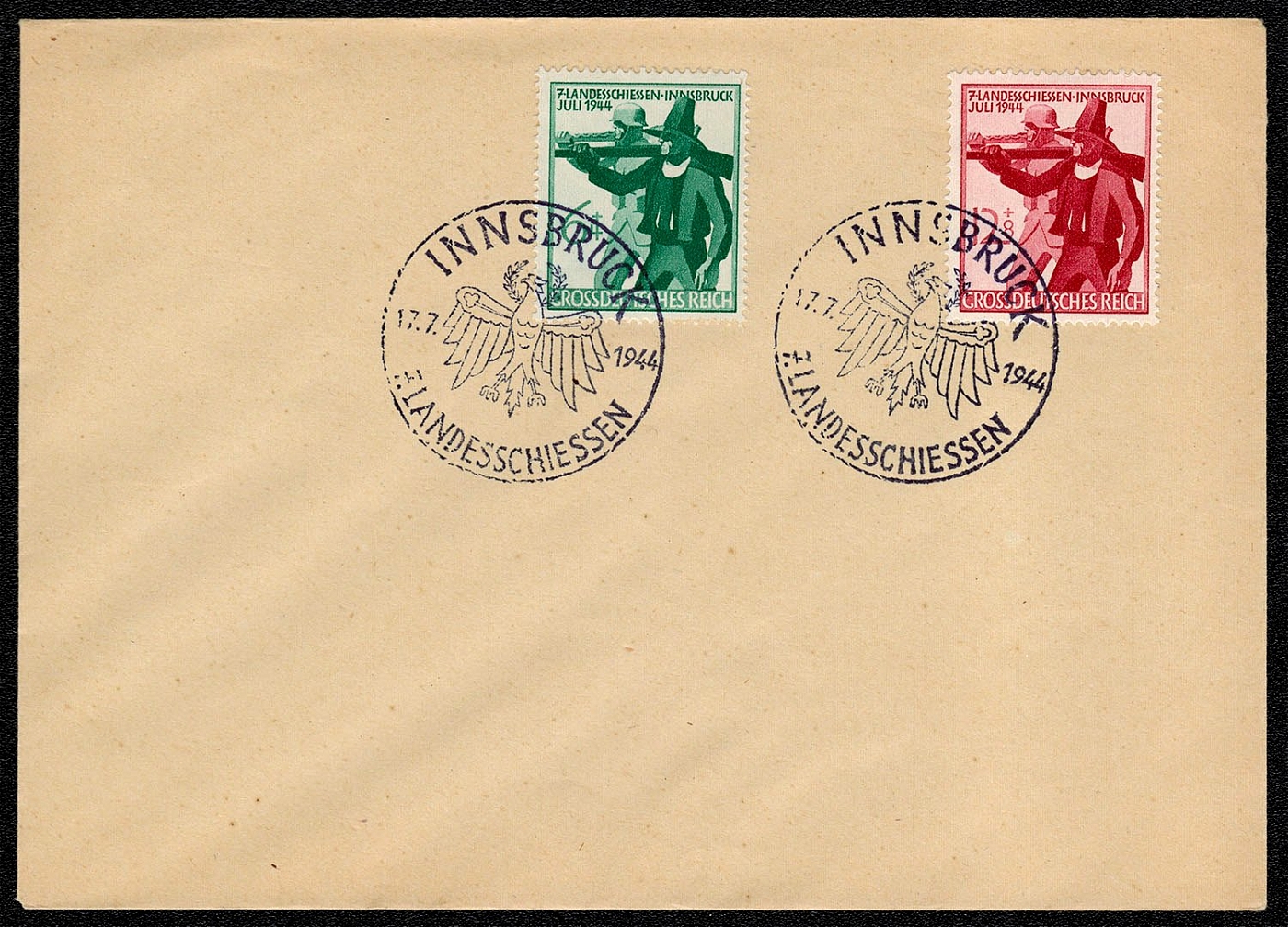
1944 Cover franked with Scott Nos. B278-9 the last day of the two week long Tyrolean Shooting Competition The special cancel depicts the Tyrolean eagle
Scott Nos. B278-9 on cover posted 17 July 1944 in Innsbruck, the last day of the two week long Tyrolean Shooting Competition The special cancel depicts the Tyrolean eagle. The competitions were held at a permanent firing range in Hofer Park. This range is still in use today.
Unsold
669
$5
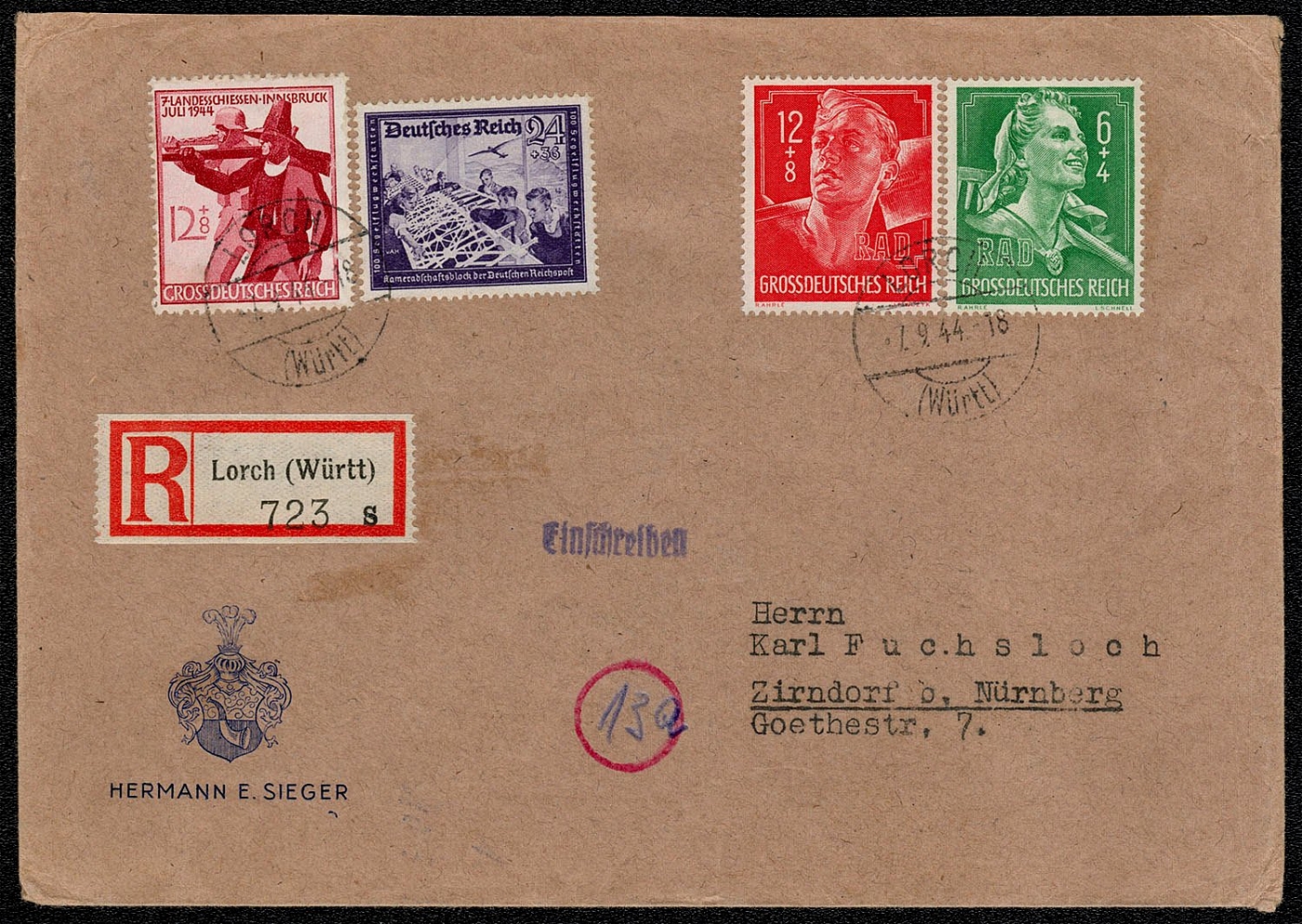
1944 Registered commercial cover franked with Sc B279, B277, B281 and B282 mailed in Lorch
A philatelically prepared (but postally used) registered commercial cover franked with Sc B279, B277, B281 and B282 mailed in Lorch (Wurttemberg) on 7 September 1944 to Zirndorf o, Nurnberg. Lorch, a village in the Third Reich State of Wurttemberg, is best known as a town in which Johann von Schiller’s parents lived from 1764-67. It was here that the poet received his first lessons at the hands of Pastor Moser. Wurttemberg was a republic from 1918 to 1934. It lost sovereignty to the Third Reich in 1934 when it became a state. No information can be found on “Zirndorf o, Nurnberg”. It may have been a postal district of Nurnberg.
Sold for:
$5
670
$5
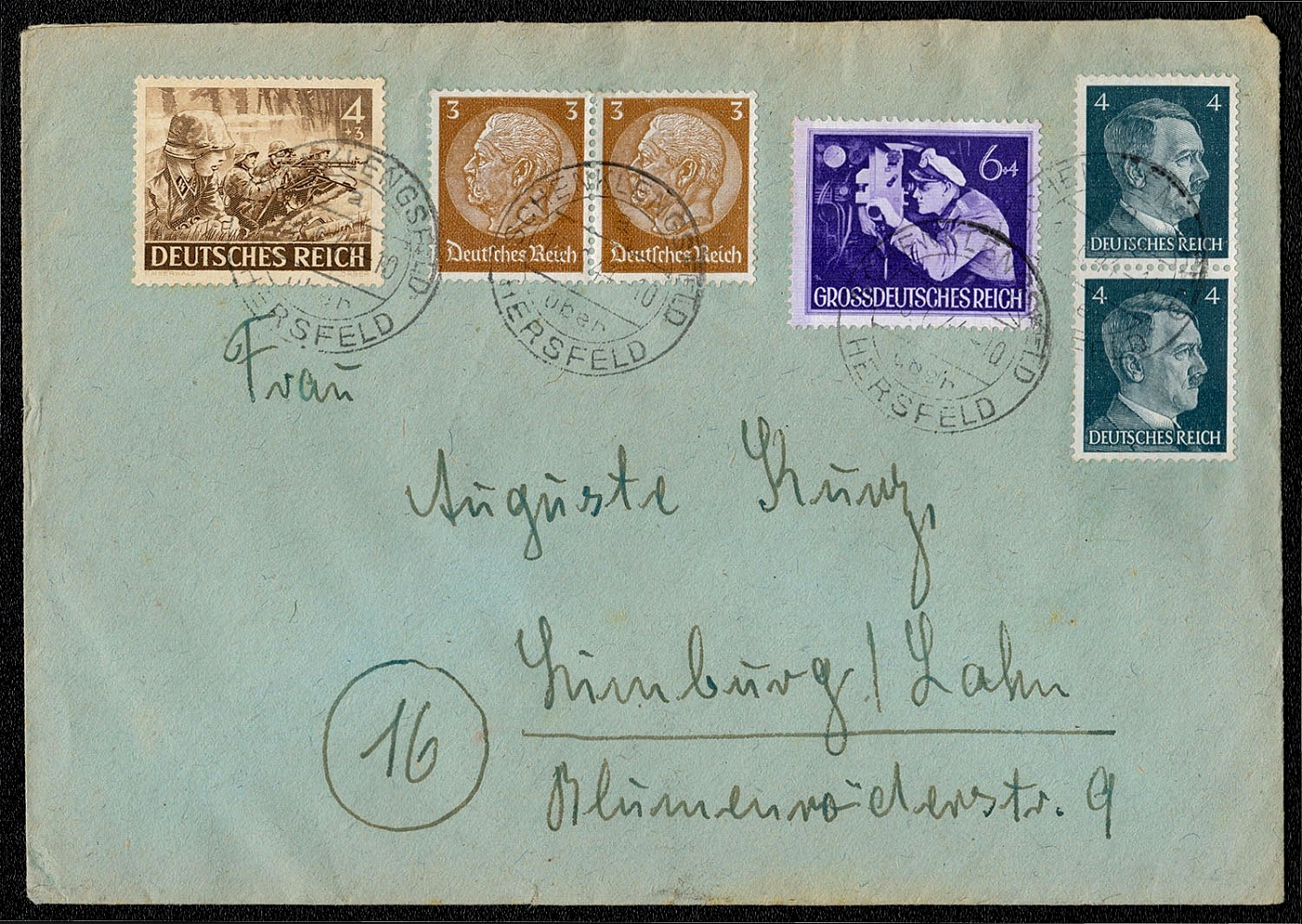
1944 Cover franked with Sc 416, 508, B218 and B260, mailed in Schenklengsfeld fiber Hersfeld
A philatelically prepared (but postally used) cover franked with Sc 416, 508, B218 and B260, mailed in Schenklengsfeld fiber Hersfeld on 15 September 1944. (The location of this town has not been determined.)
Sold for:
$5
671
$5
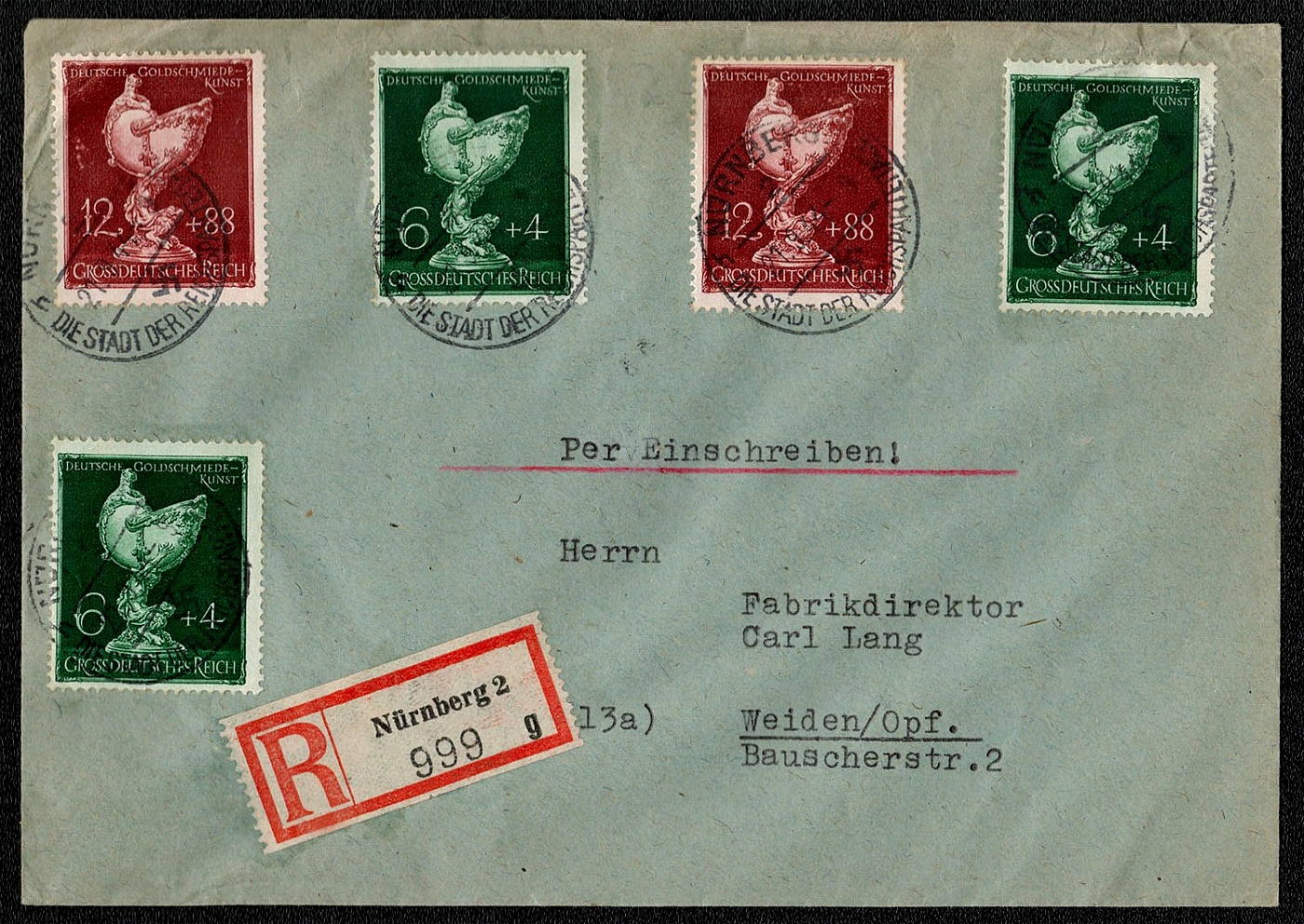
1944 Registered cover franked with multiple copies of Sc B286-87 mailed from Postamt Nuremberg
A philatelically prepared (but postally used) registered cover franked with multiple copies of Sc B286-87 mailed from Postamt Niirnberg 2 to Weiden/Opf. on 21 September 1944. Weiden, in southern Germany, had a population of approximately 20,000 in 1944.
Sold for:
$5
672
$5
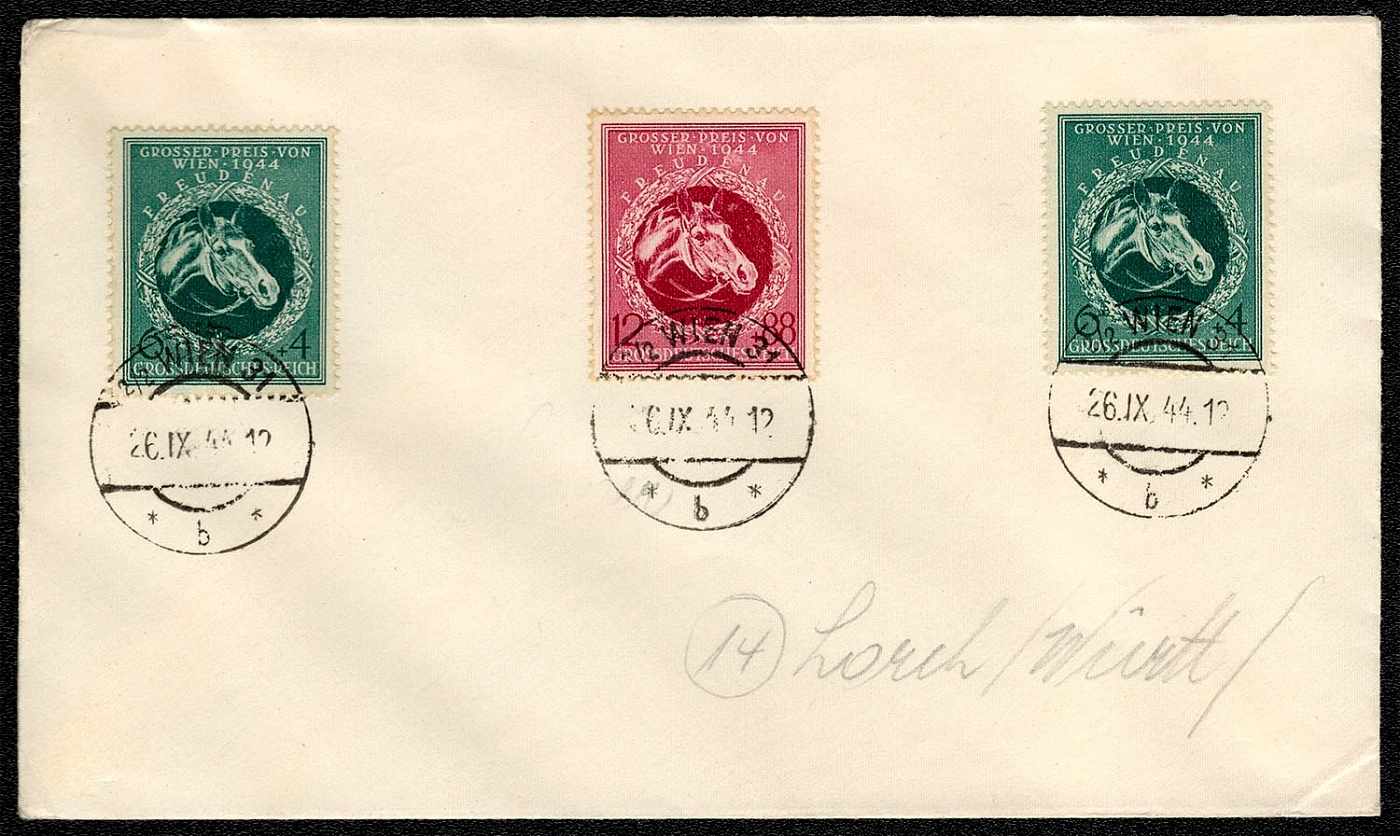
1944 Cover franked with multiple copies of Sc B284-85 cancelled in Wien
A philatelically prepared cover franked with multiple copies of Sc B284-85 cancelled in Wien on 26 September 1944.
Sold for:
$5
673
-
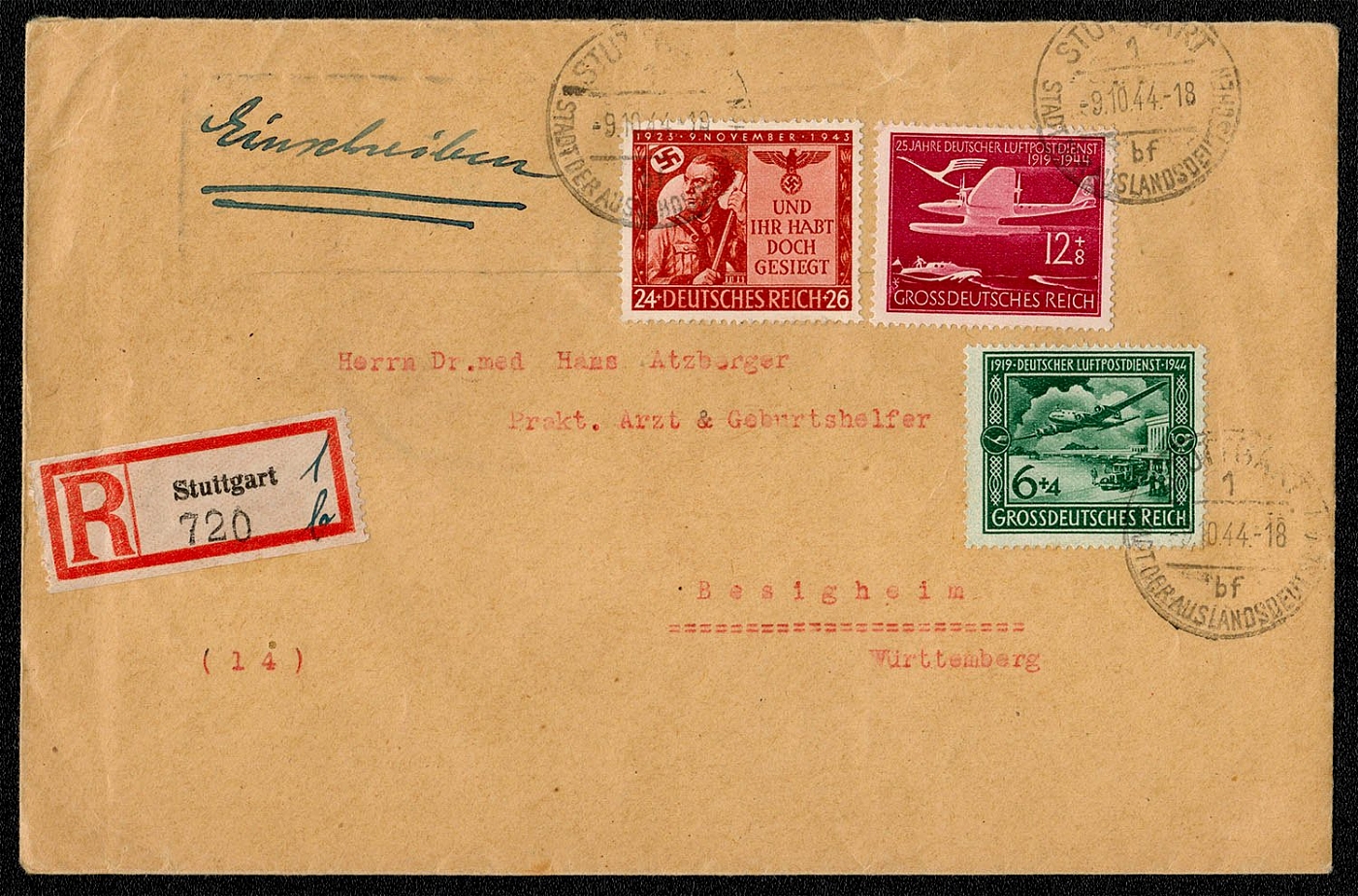
1944 Registered cover franked with Sc B250, B252B and B252C. Posted in Stuttgart, “The City of Germans Living Abroad”
Registered cover franked with Sc B250, B252B and B252C. Posted in Stuttgart, “The City of Germans Living Abroad” on 9 October 1944. The total postal value of the stamps (42 Rpf) paid the registered mail rate. The additional surtax (38 Rpf) supposedly went to the National Culture Fund, but was more likely used to pay down the mounting debt created by the war effort. The letter is addressed to: Hans Atzberger, Dr. of Med. Physician and Obstetrician Besigheim, Wurttemberg. Besigheim, a town of approximately 3800 in 1944, was “one of the most picturesque and unspoilt of Germany’s smaller towns.” At least before the war.
Unsold
674
$5
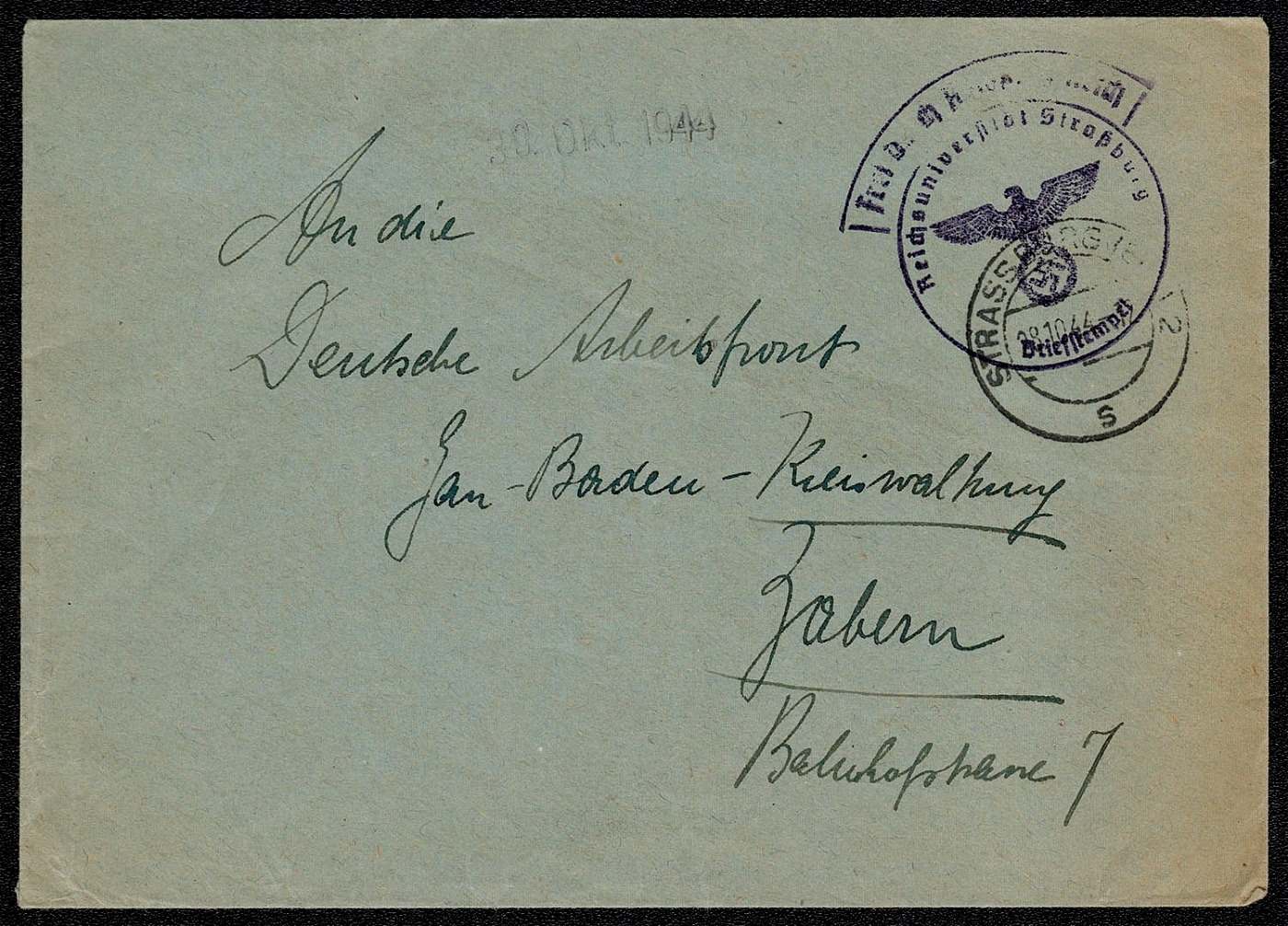
1944 Official cover with handstamped franking Free throughout the Reich National University at Strassburg Letter Stamp
Official cover with handstamped franking (Free throughout the Reich National University at Strassburg Letter Stamp) Posted 28 October 1944 in Strassburg to the Deutsche Arbeitsfront Kreiswaltung Zabem. In 1944, Strassburg and Zabern (Strasbourg and Saverne) were part of Grossdeutsches Reich (The Greater German Reich). Today they are in France. A Kreis was a governmental territorial unit similar to a county.
Sold for:
$5
675
$10
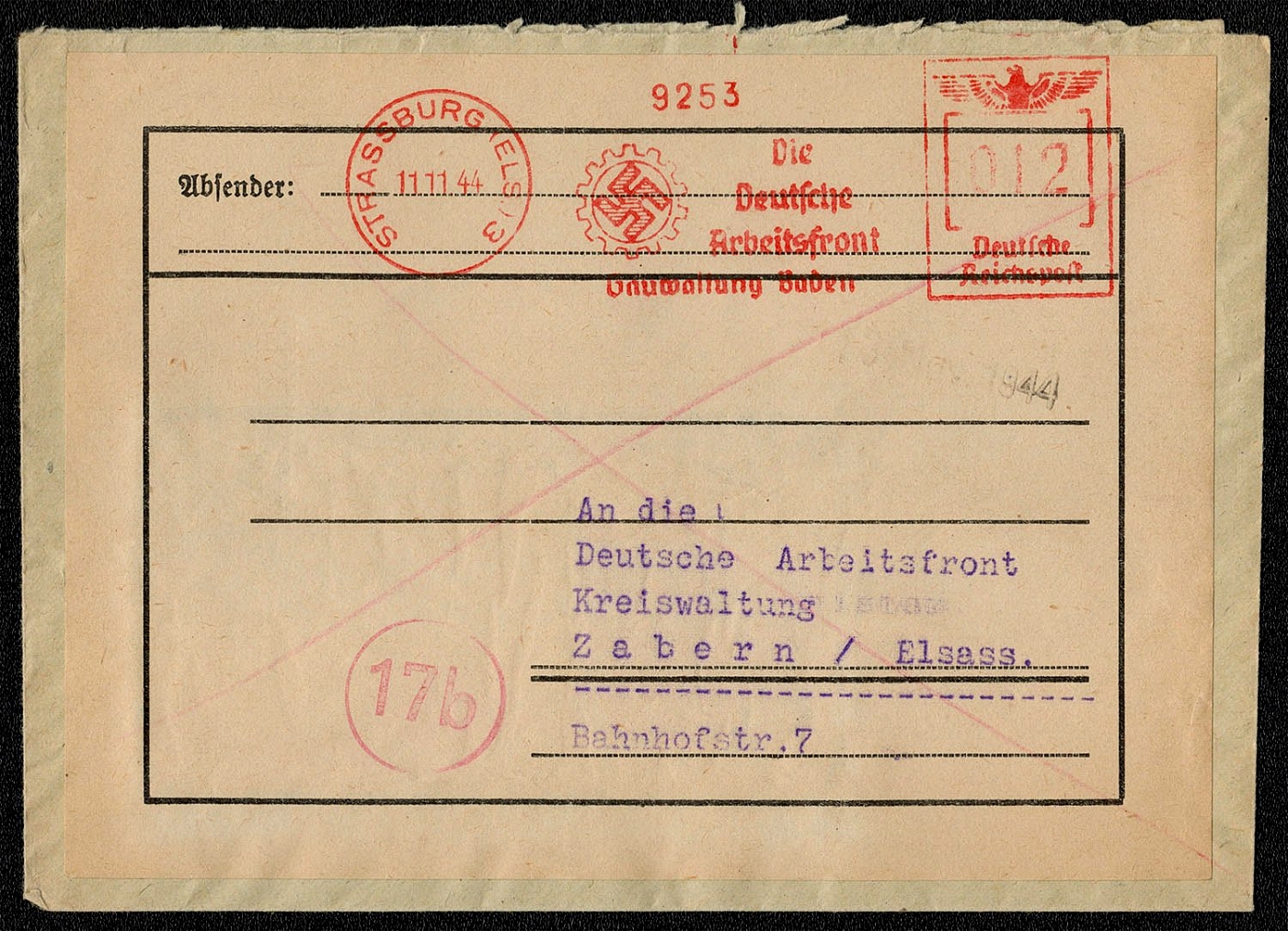
1944 Official cover with postal meter franking The German Labor Front Gauwaltung Baden
Posted 11 November 1944 in Strassburg to the Deutsche Arbeitsfront Kreiswaltung Zabern / Elsass. Strassburg and Zabern (Strasbourg and Saverne) were part of Grossdeutsches Reich (The Greater German Reich) in 1944. A Gau was one of 43 regional divisions of the NSDAP, and larger than a Kreis.
Sold for:
$10
676
$5
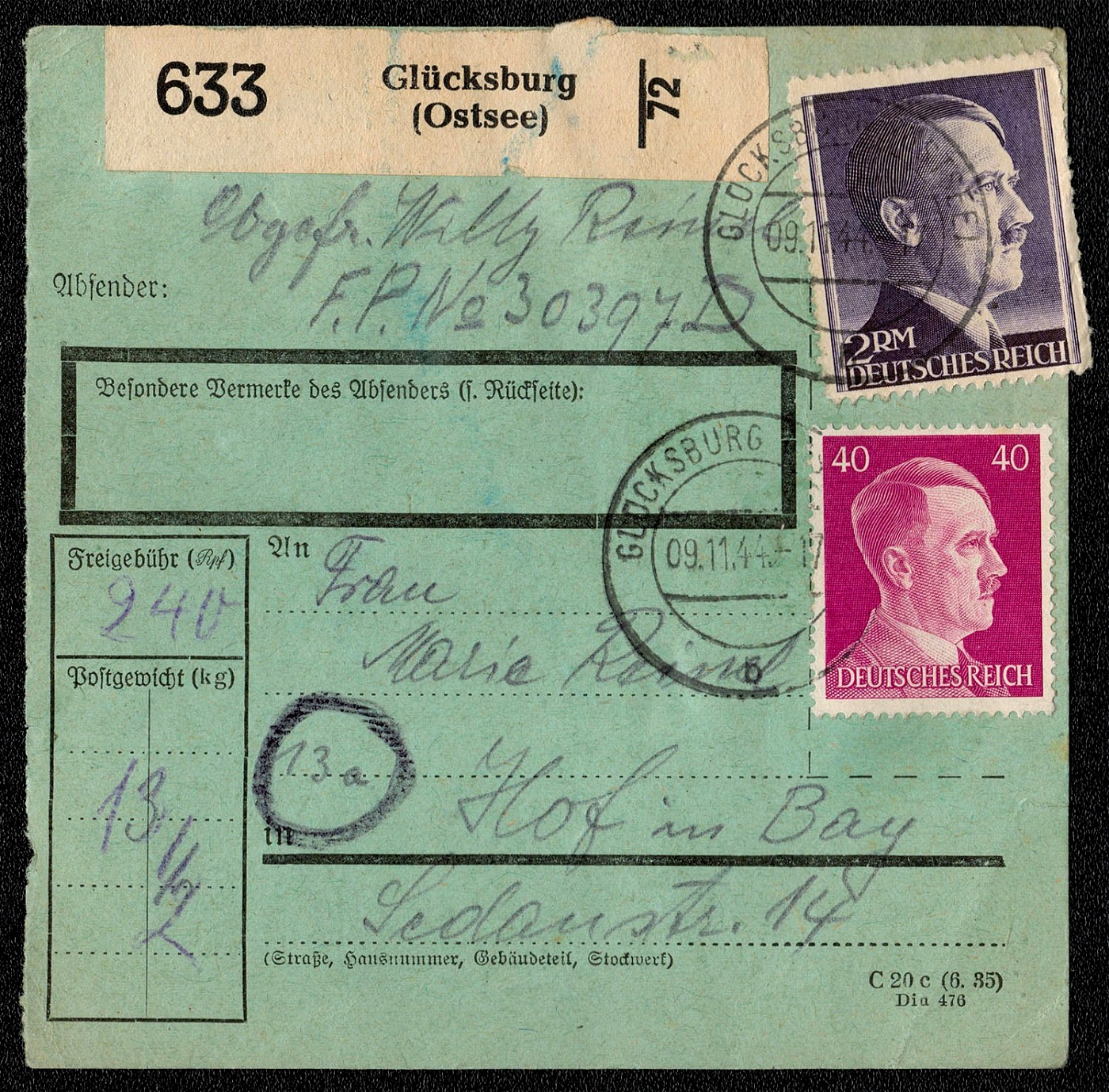
1944 Local district postal receipt franked with Scott 520 and 525 recording a package sent from Glucksburg
Local district postal receipt franked with Scott 520 and 525 recording a package sent from Glucksburg (Ostsee) by Obergruppenfiihrer Willy Reinal, Feldpost No. 30397D, to his wife Marie in Hof in Bay on 9 November 1944. Glucksburg is in northern Germany, west of the Baltic Sea, and a little to the south of the Danish and German frontier. Before the war, Glucksburg was a bathing place picturesquely situated on a small lake. It is near Flensburg, a naval base that was frequently bombed during the war.
Sold for:
$5
677
$5
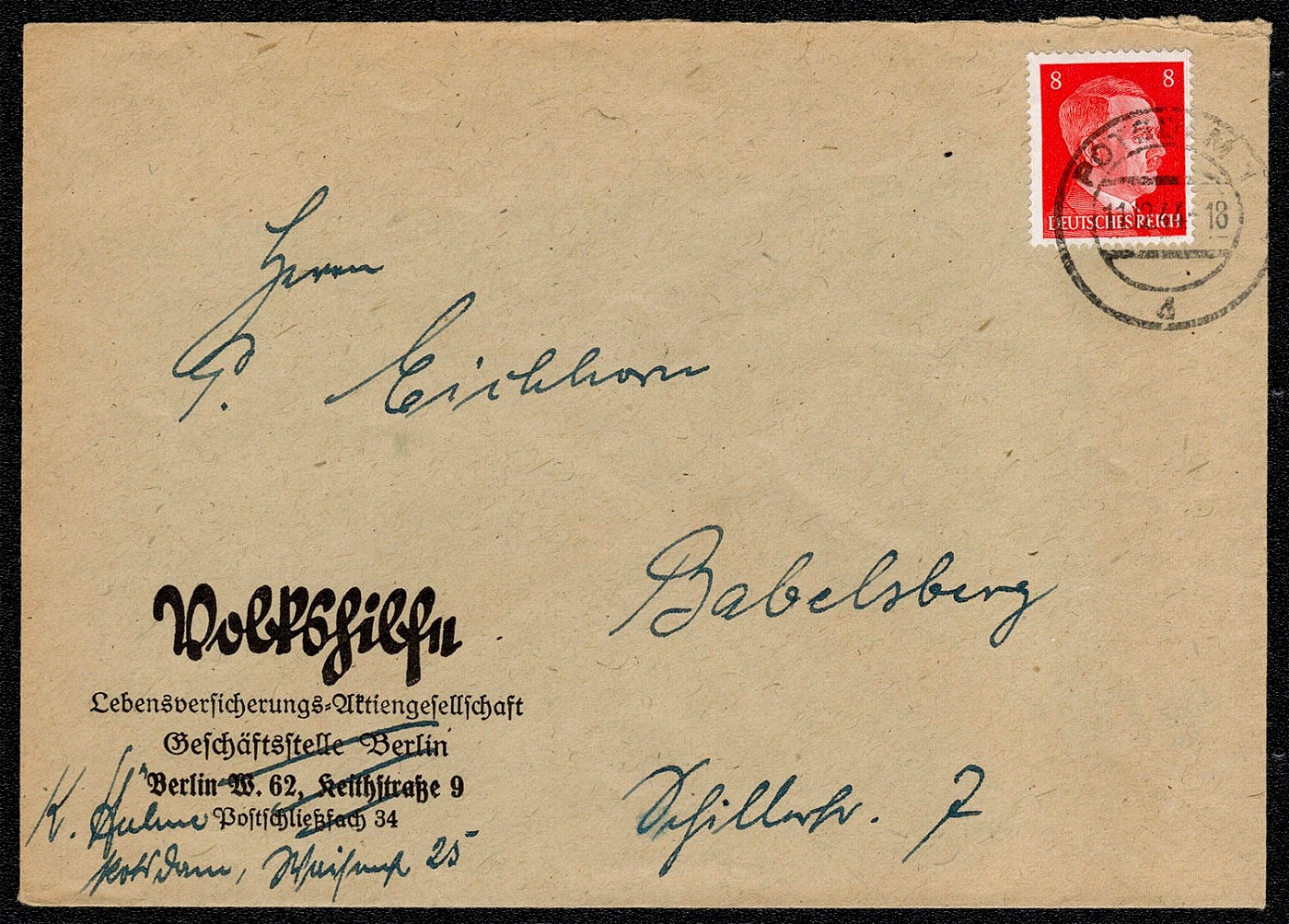
1944 Commercial cover franked with Scott 511 (Issue of 1941/44), postmarked Potsdam
"Commercial cover franked with Scott 511 (Issue of 1941/44), postmarked Potsdam, 11 December 1944, and addressed to Babelsberg, presumably a district surrounding Schloss Babelsberg. The latter is a picturesque 19""' century castle northeast of Potsdam on the left bank of the Havel River. The corner card, lower leftt identifies the cover as having come from the offices of a joint-stock life insurance company."
Sold for:
$5
678
$10
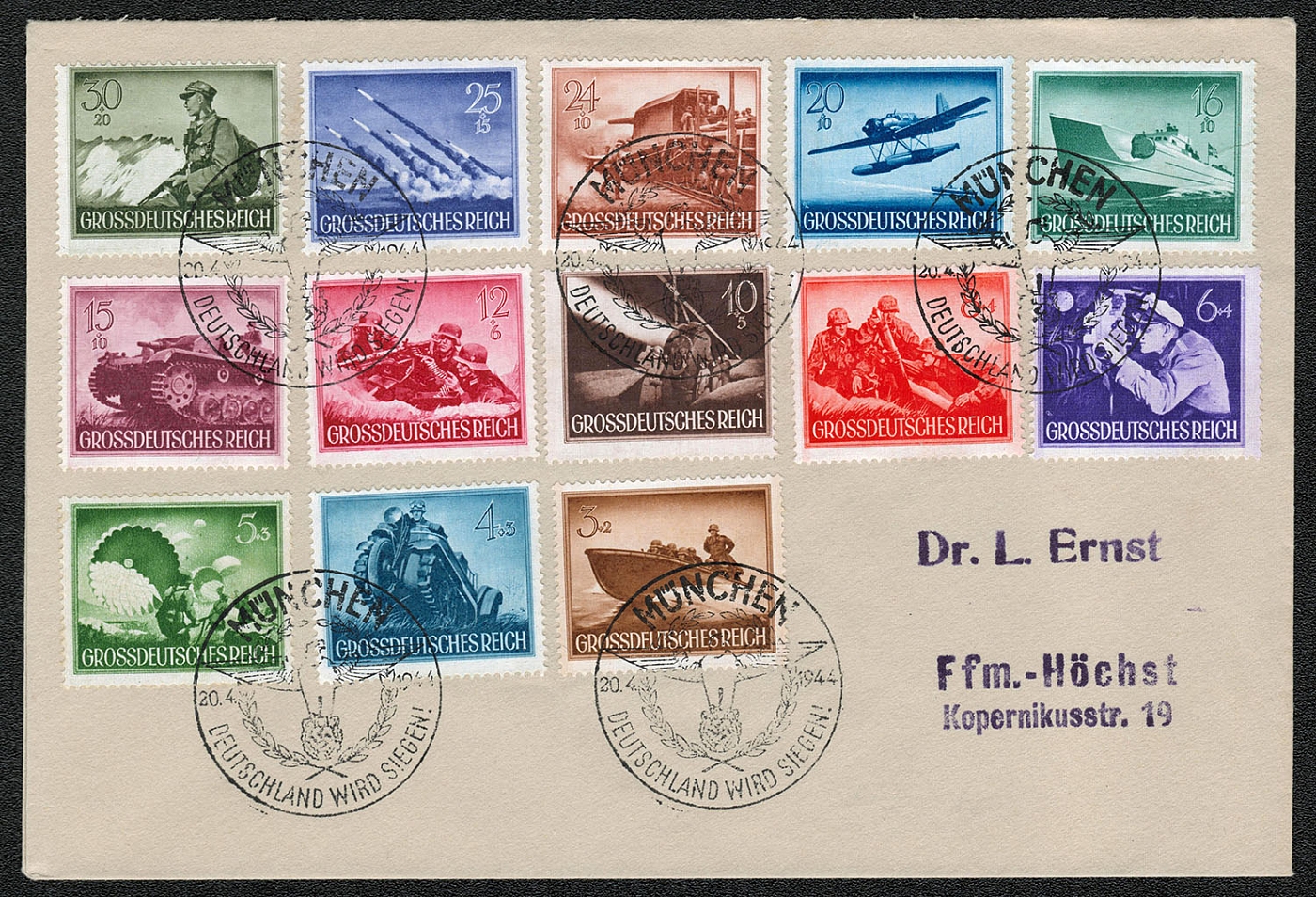
1944 The Heroes Memorial and Army Day issue on a postally used cover
1944 The Heroes Memorial and Army Day issue on a postally used cover
Sold for:
$10
679
$18
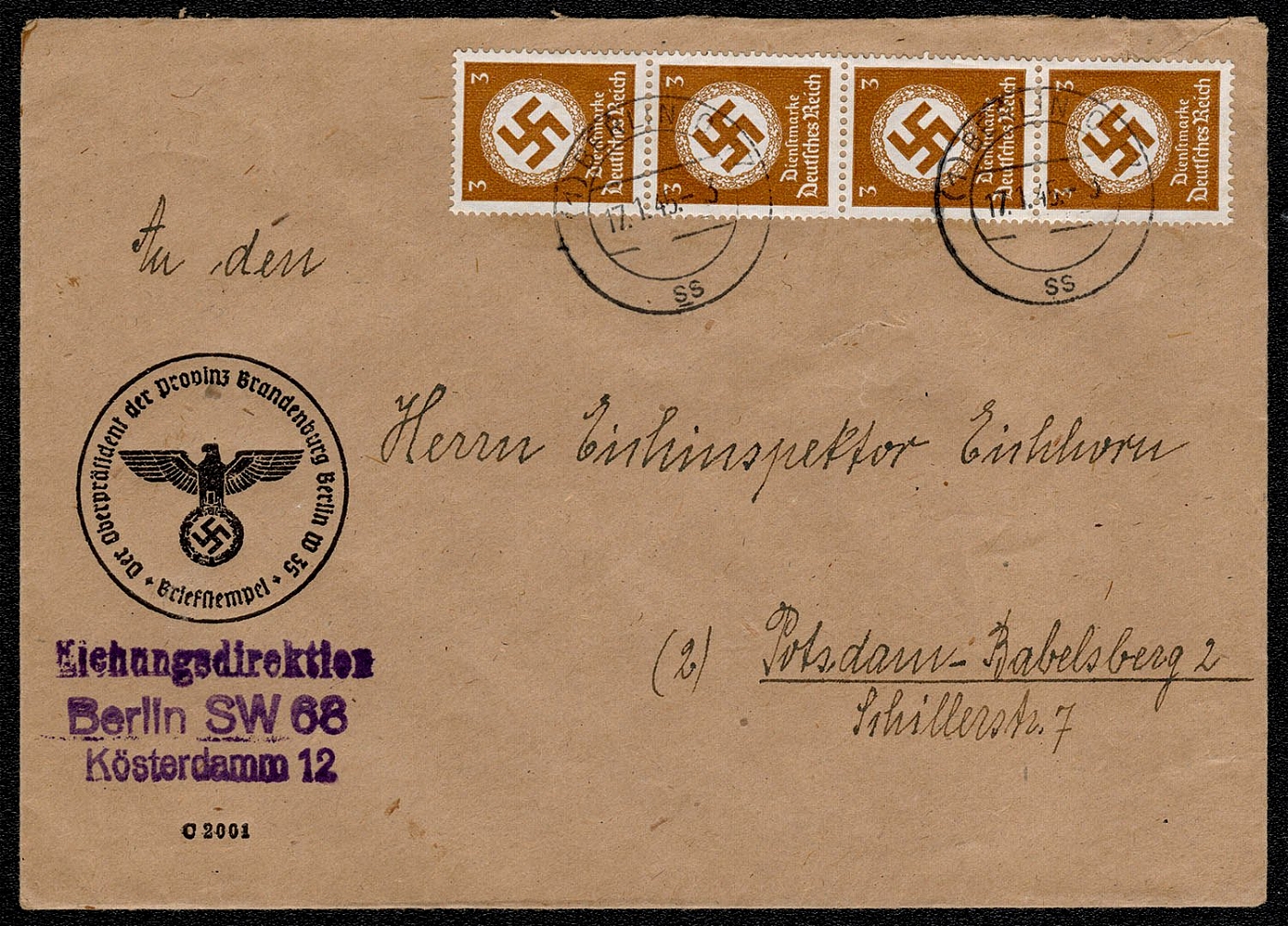
1945 Official cover franked with a strip of four of Scott 092 (Issue of 1942/44), postmarked Berlin
Official cover franked with a strip of four of Scott 092 (Issue of 1942/44), postmarked Berlin, 17 January 1945, and addressed to the Inspector of Standardization in Potsdam. The circular stamp center left Vraubctiburn 'Berlin 2S 35 identifies the cover as having come fr om the office of the President of the Province of Brandenburg Berlin W 35. The purple hand stamp below it is that of the Director of Standardization, Berlin SW 68'. All in all, it is not clear wh ere the cover originates, but the situation in Berlin at this late stage of the war was near chaotic.
Sold for:
$18
680
$5
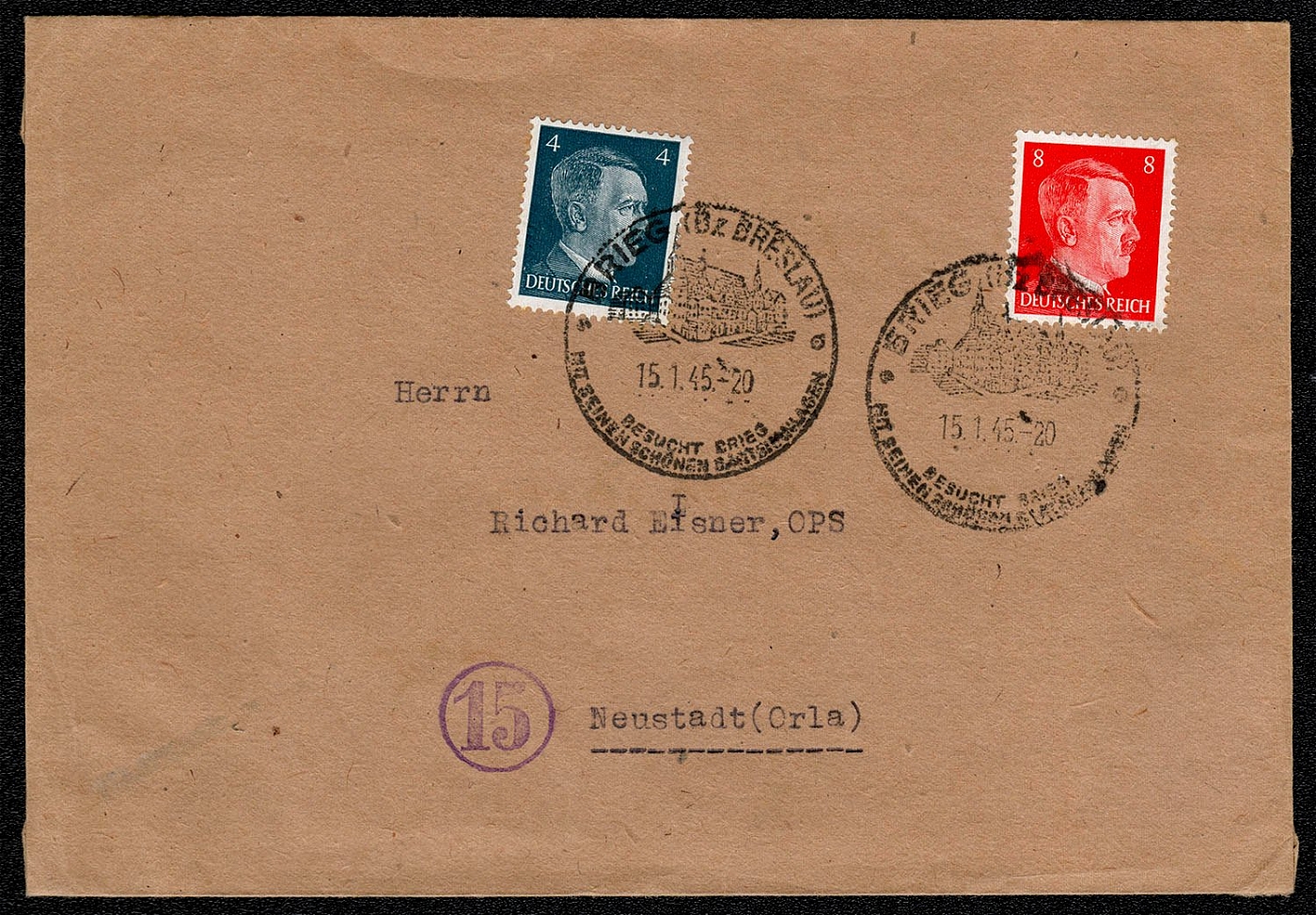
1945 Cover franked with Scott 508 and 511 paying the 12 Rpf letter rate posted 15 January 1945 in Brieg
"Cover franked with Scott 508 and 511 paying the 12 Rpf letter rate posted 15 January 1945 in Brieg (Bz Breslau). Brieg was a town of approximately 30,000 in 1945. On the Oder River and formerly in Prussia, it was assigned to Poland at the Potsdam Conference. Historically, it was the residence of the Dukes of Brieg from 1311 to 1675. The former Piasten-Schloss (castle) is constructed of sandstone and covered with figures and rich ornamentation in the most tasteful 16""' century Renaissance style. The slogan within the publicity cancel: BESUCHT BRIEG MIT SEINEN SCHONEN GARTENANLAGEN translates: VISIT BRIEG WITH ITS BEAUTIFUL GARDEN ARRANGEMENT The most interesting aspect of this cover beyond its late wartime usage is the fact that it was originally franked with Sc 51 IB (12 Rpf, carmine) and posted in Zerbst on 27 November 1944. In other words, it was turned inside out and used twice due to the severe paper shortage!"
Sold for:
$5
681
$6
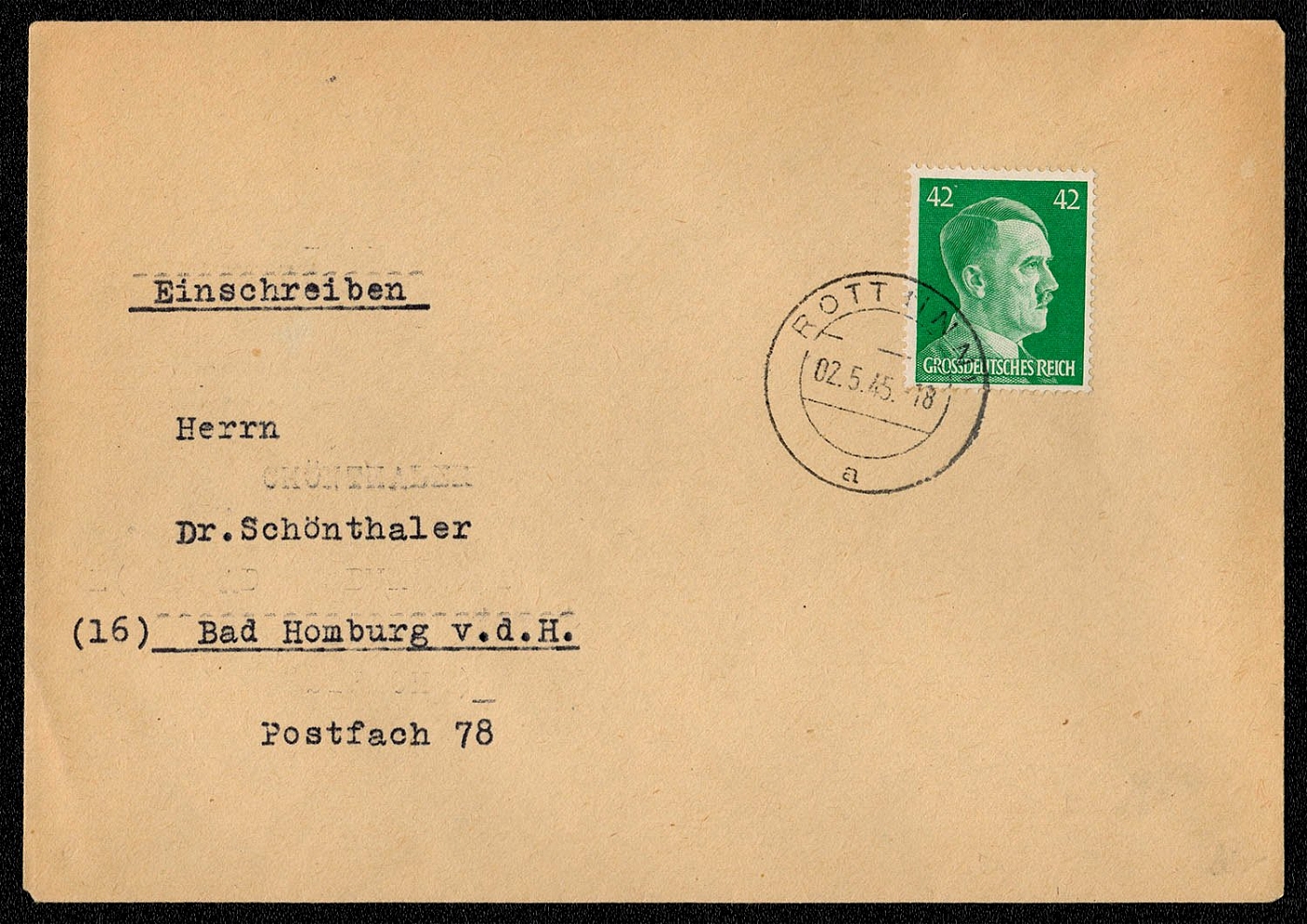
1945 Cover franked with Scott No. 529 posted in Rott (Inn) on 2 May 1945, five days before Germany’s surrender to the Allies
Cover franked with Scott No. 529 posted in Rott (Inn) on 2 May 1945, five days before Germany’s surrender to the Allies. The cover was mailed from Fran Ursula Schonthaler to Dr. Schonthaler in Bad Homburg. § There are two small towns in Germany with the name Rott. The town from which this letter was mailed is on the Inn River about 45 kilometers (28 miles) east of Munclien. Baedeker’s Guide to Southern Germany (1929 Edition) speaks of the region thusly: The train soon diverges on the light from the Munchen line and runs north across the plain of the Inn. On a hill, to the left of Rott (1445ft.), is a large old Benedictine abbey, the church of which, rebuilt by J. M. Fischer in 1759, is a masterpiece of the south German rococo style. The interior decoration comprises frescoes by Matthias Gunther (1763), plaster work by F. X. Feichtmayr and Jakob Rauch, and delicately painted wooden figures by Ignaz Gunther.
Sold for:
$6
682
-
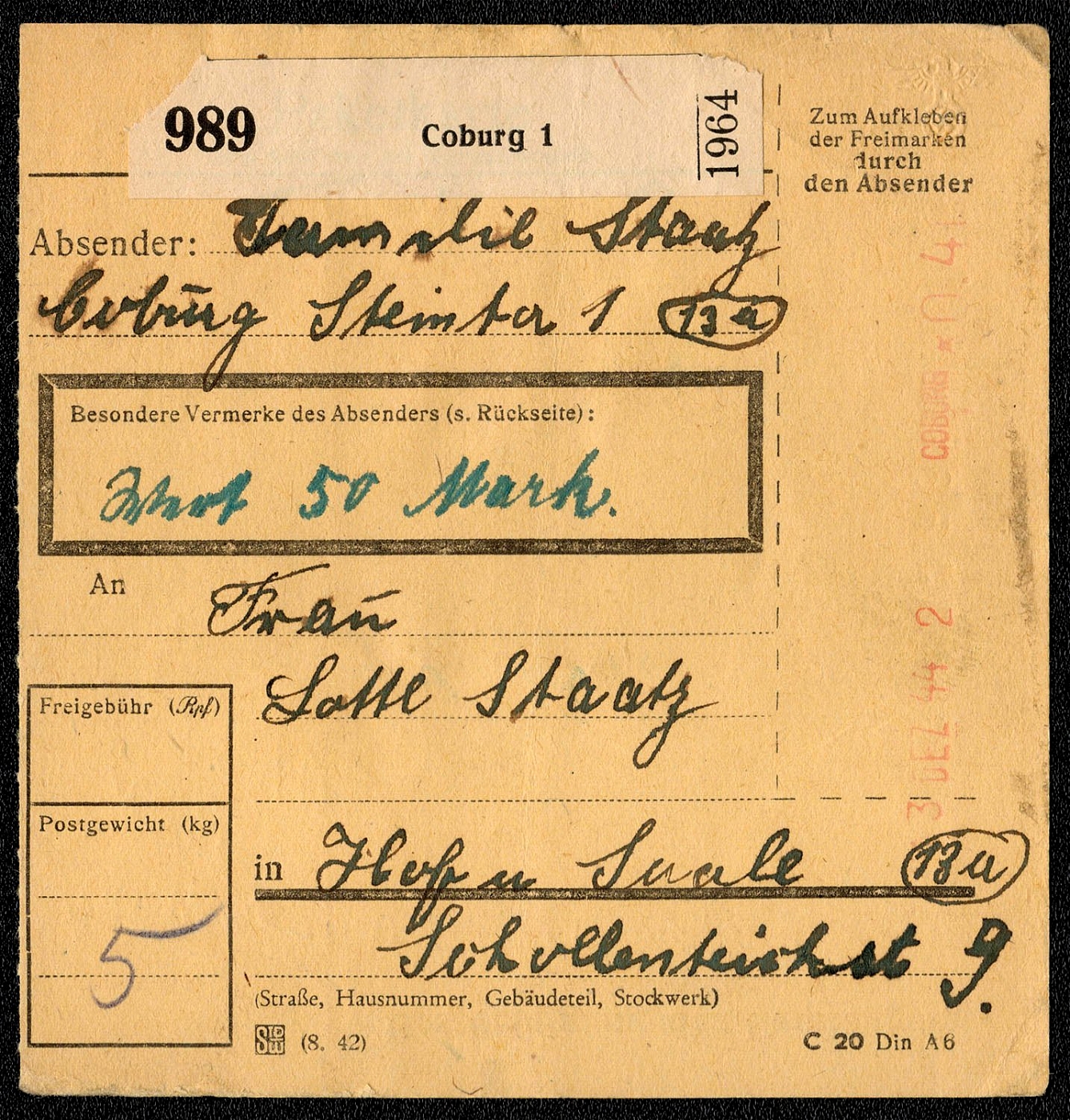
1944 Local district postal receipt recording a 5 kg package sent from Coburg
Local district postal receipt recording a 5 kg package sent from Coburg on 3 December 1944. Coburg is a manufacturing and commercial city in Bavaria, 36 miles northwest of Bayreuth. “Coburg (975 ft.) with 24,700 inhabitants (1929) is prettily situated in the valley of the Itz and dominated by its imposing castle. It boasts of a number of old buildings, mostly erected under Duke Johann Kasimir (1572-1633). Its industries include the manufacture of porcelain, brewing, and weaving.” Southern Germany, (Karl Baedeker, Leipzig, 1929).
Unsold
683
-
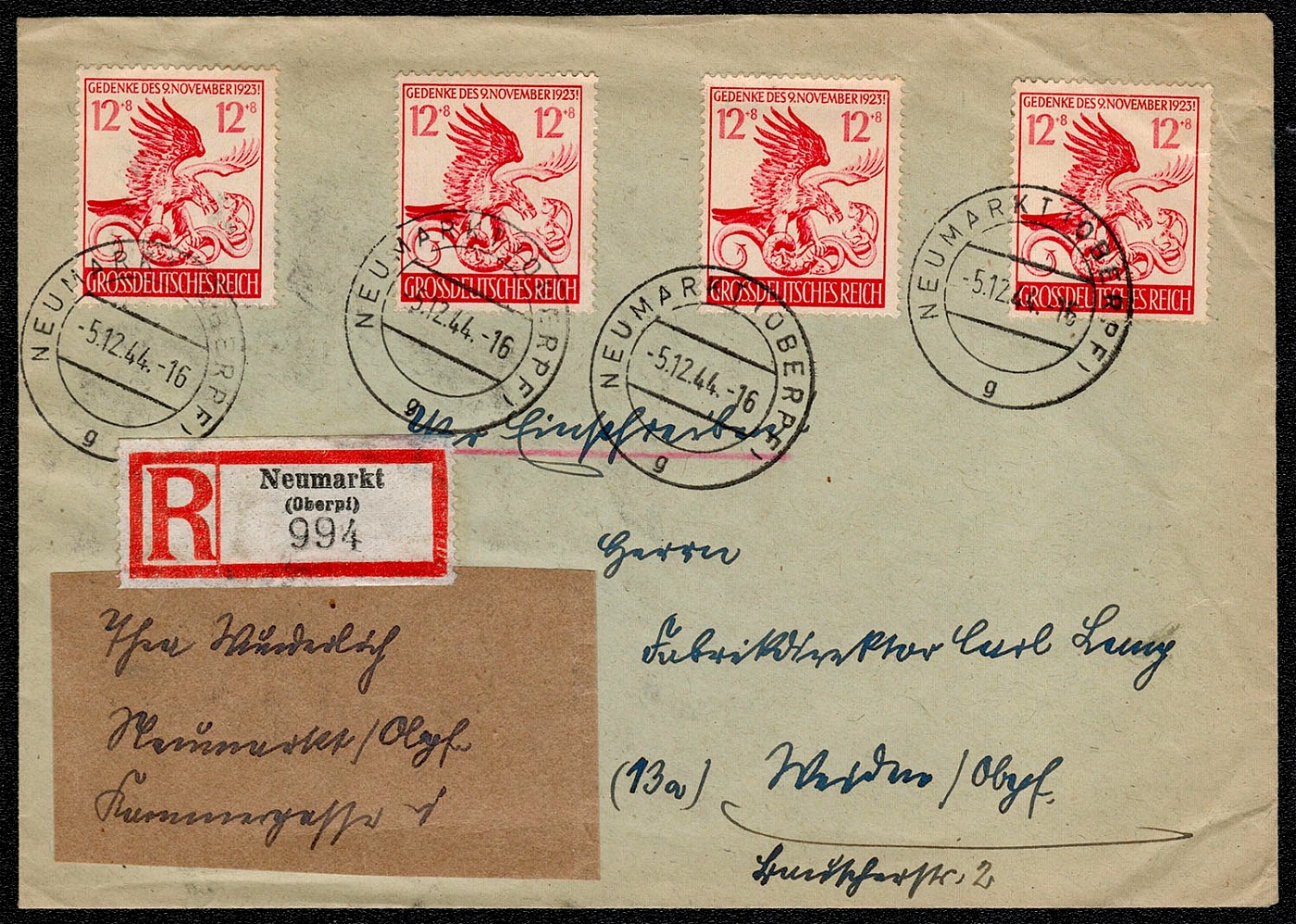
1944 Four singles of Scott No. B286 postally used on mail cancelled Neuinarkt
"Four singles of Scott No. B286 postally used on mail cancelled 5 December 1944 in Neuinarkt (Oberpf). The 1929 edition of Baedeker’s Guide to Southern Germany says of this hamlet 85 miles south of Nurnberg: Neumarkt in der Oberpfalz ... a small town of 7900 inhabitants at 1394 feet with a 15""' century parish church. The century Schloss (castle) contains the local government offices."
Unsold
684
-
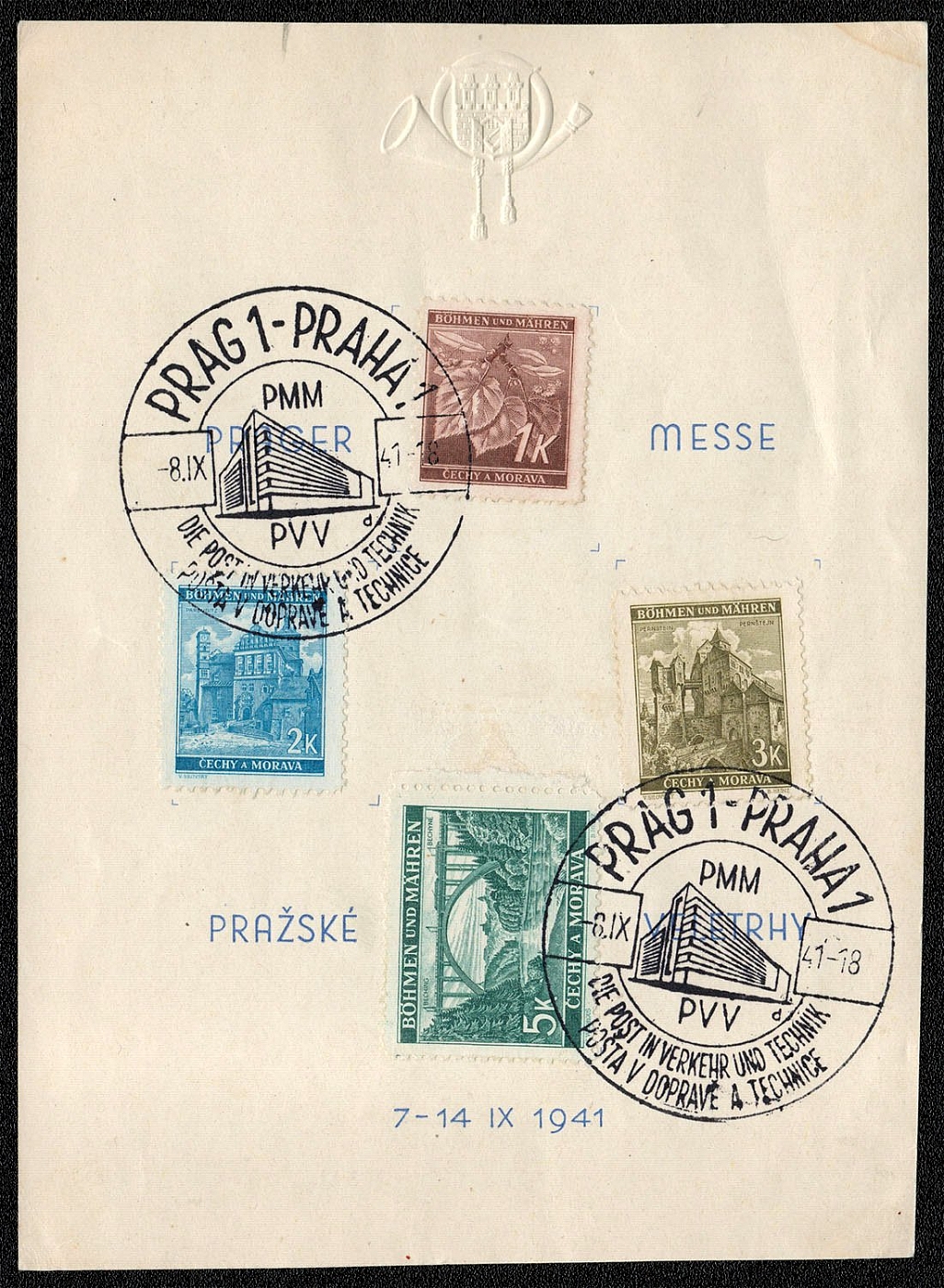
1941 Bohemia and Moravia German Protectorate Postal Issues Embossed Prag Messe souvenir card
Embossed Prag Messe (Prague Fair) souvenir card franked with Scott Nos. 44, 51, 53A, and 53C cancelled in Prag on 8 September 1941. The special cancel commemorates “The Post in Commerce and Technology.”
Unsold
685
-
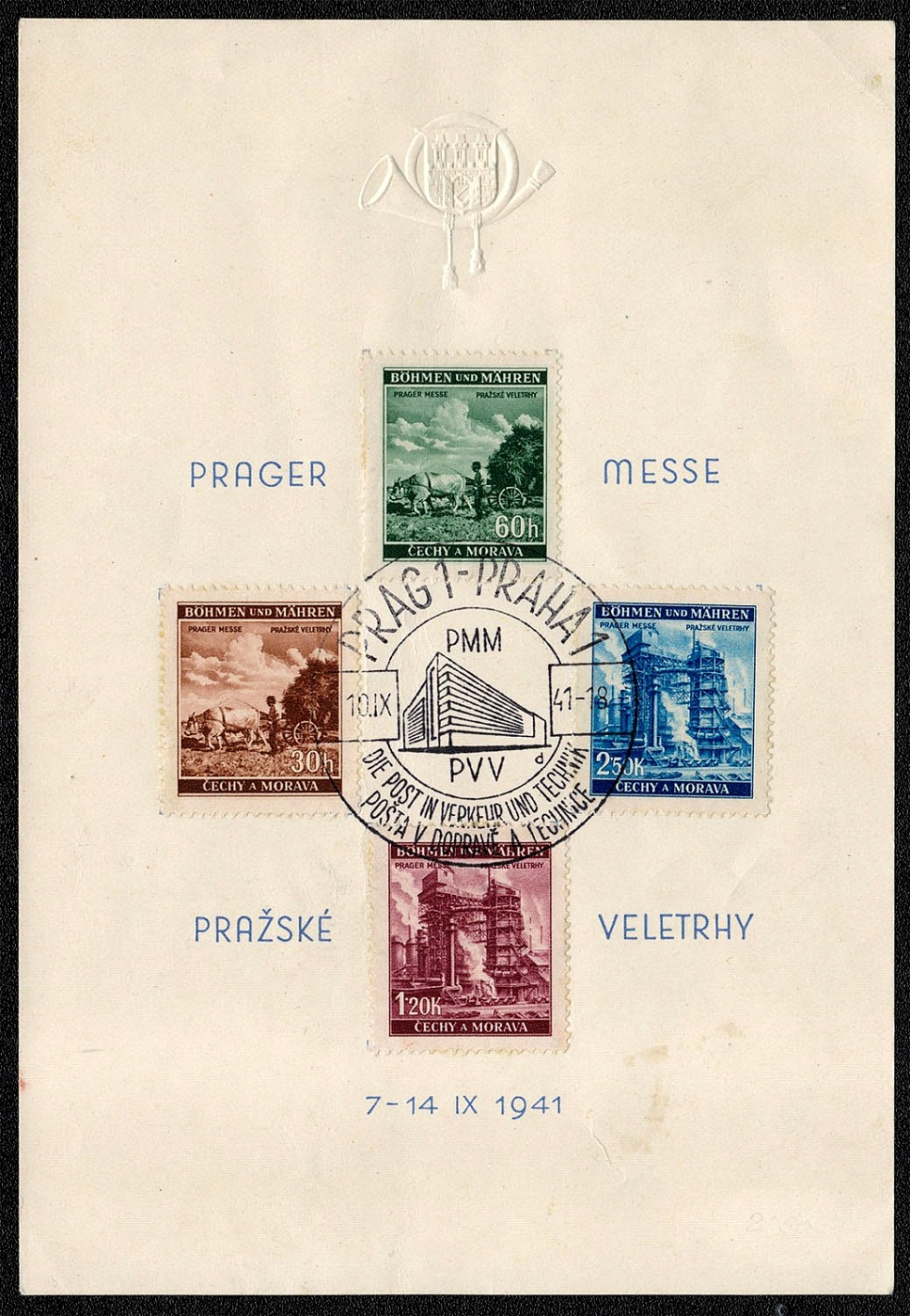
1941 Bohemia and Moravia German Protectorate Souvenir Sheet for the Prag Fair
Souvenir Sheet for the Prag Fair, 7-14 September 1941 postmarked 10 September. The Post in Trade and Technology
Unsold
686
$10
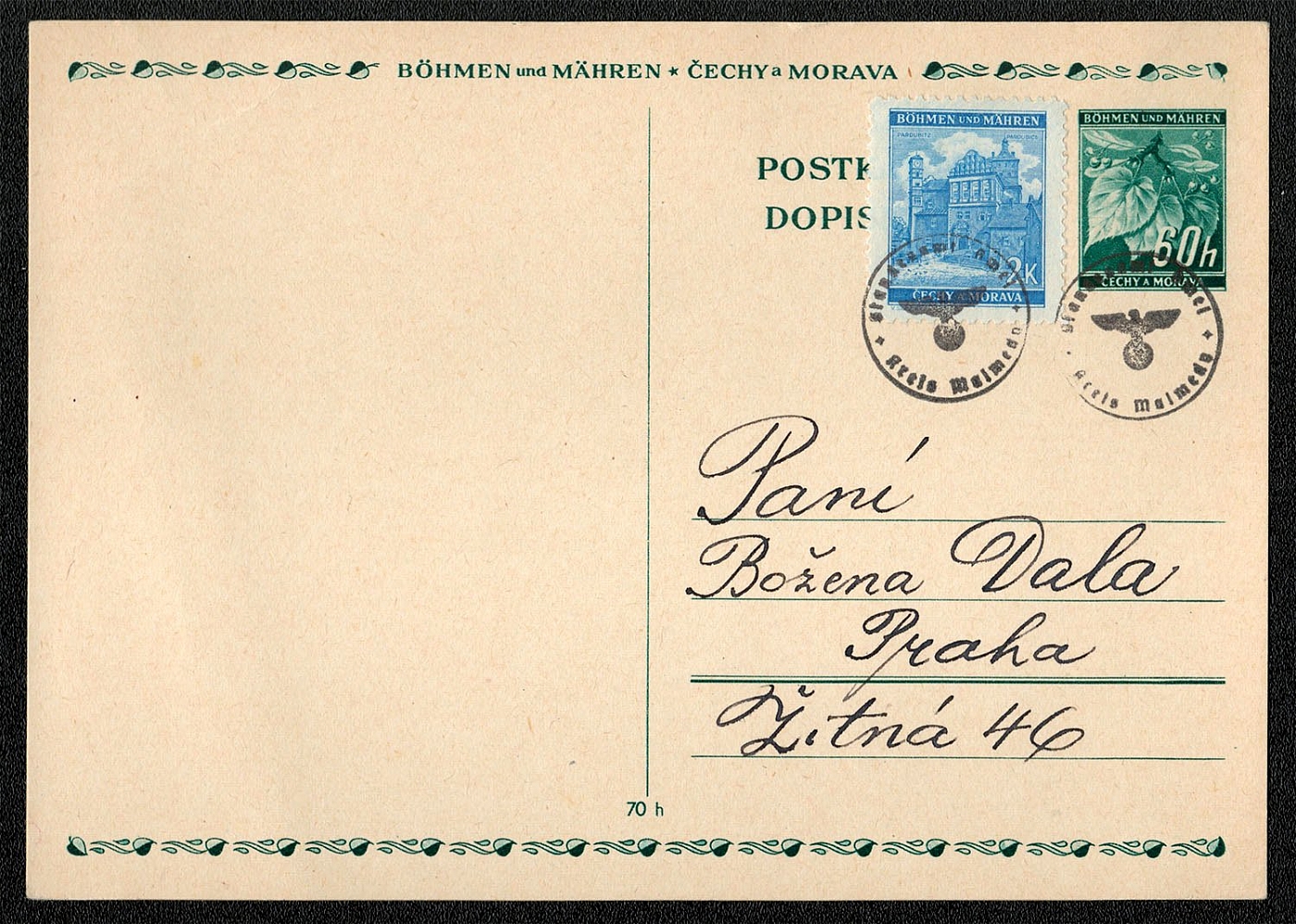
1941 Bohemia and Moravia German Protectorate postcard from the 1939-1941 Linden Leaf and Fruit series
Lindenzweig mit Lindenfriichten Philatelically prepared and possibly postally used Bohemia and Moravia postcard from the 1939-1941 Linden Leaf and Fruit series (Michel P2) additionally franked with Michel 70a (issued 1941). The small circle hand stamp identified as being from Kreis Malmede (?) does not appear to be a conventional postmark inasmuch as there is no date strike.
Sold for:
$10
687
$16
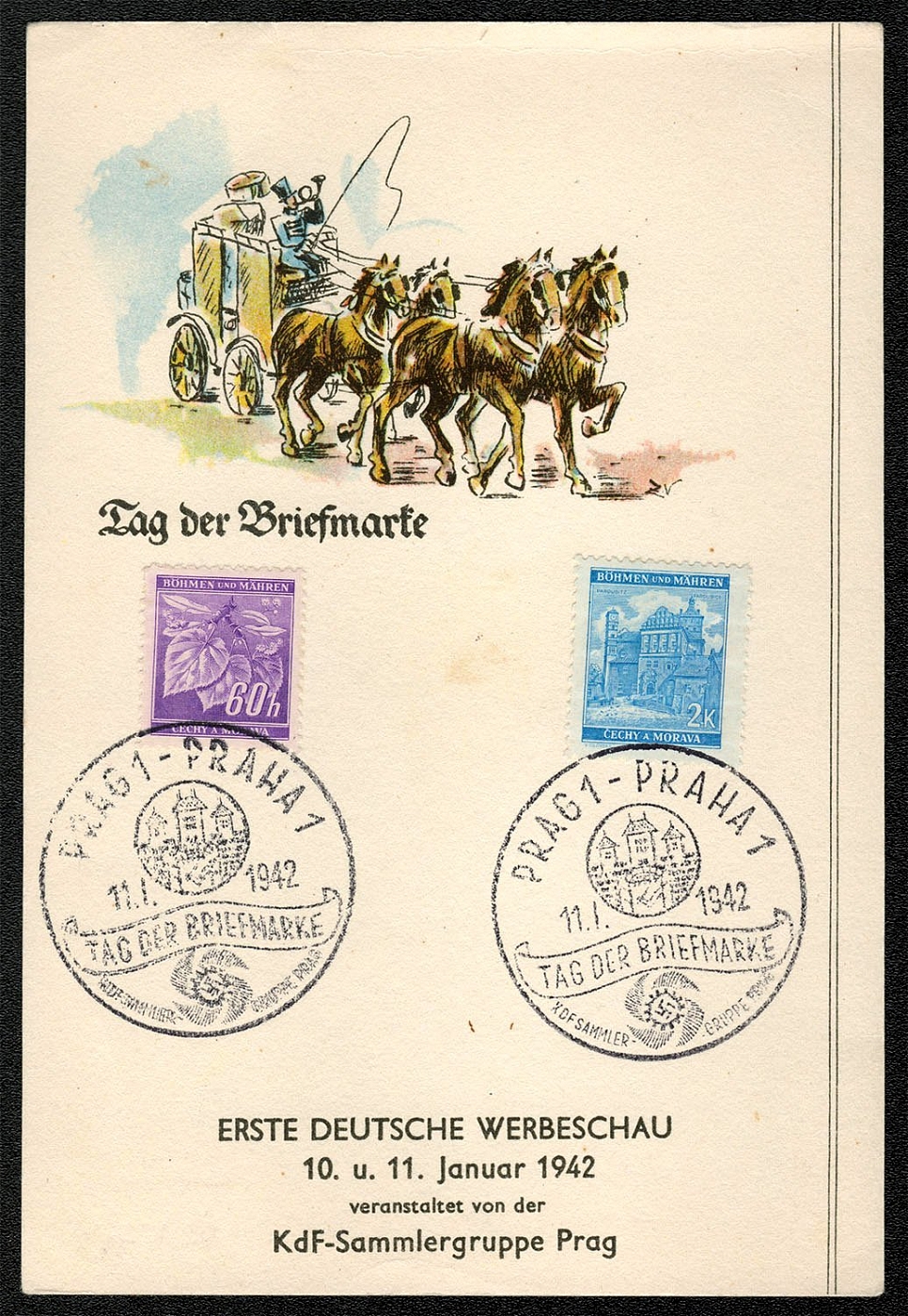
1941 Bohemia and Moravia German Protectorate Souvenir Sheet franked with Michel 27 and 56
FIRST GERMAN PUBLICITY SHOW 10 and 11 January 1942 Promoted by the Strength through Joy Collectors Club of Prag Souvenir Sheet franked with Michel 27 and 56 postmarked on The Day of the Stamp, 11 January 1942, Prag 1.
Sold for:
$16
688
$10
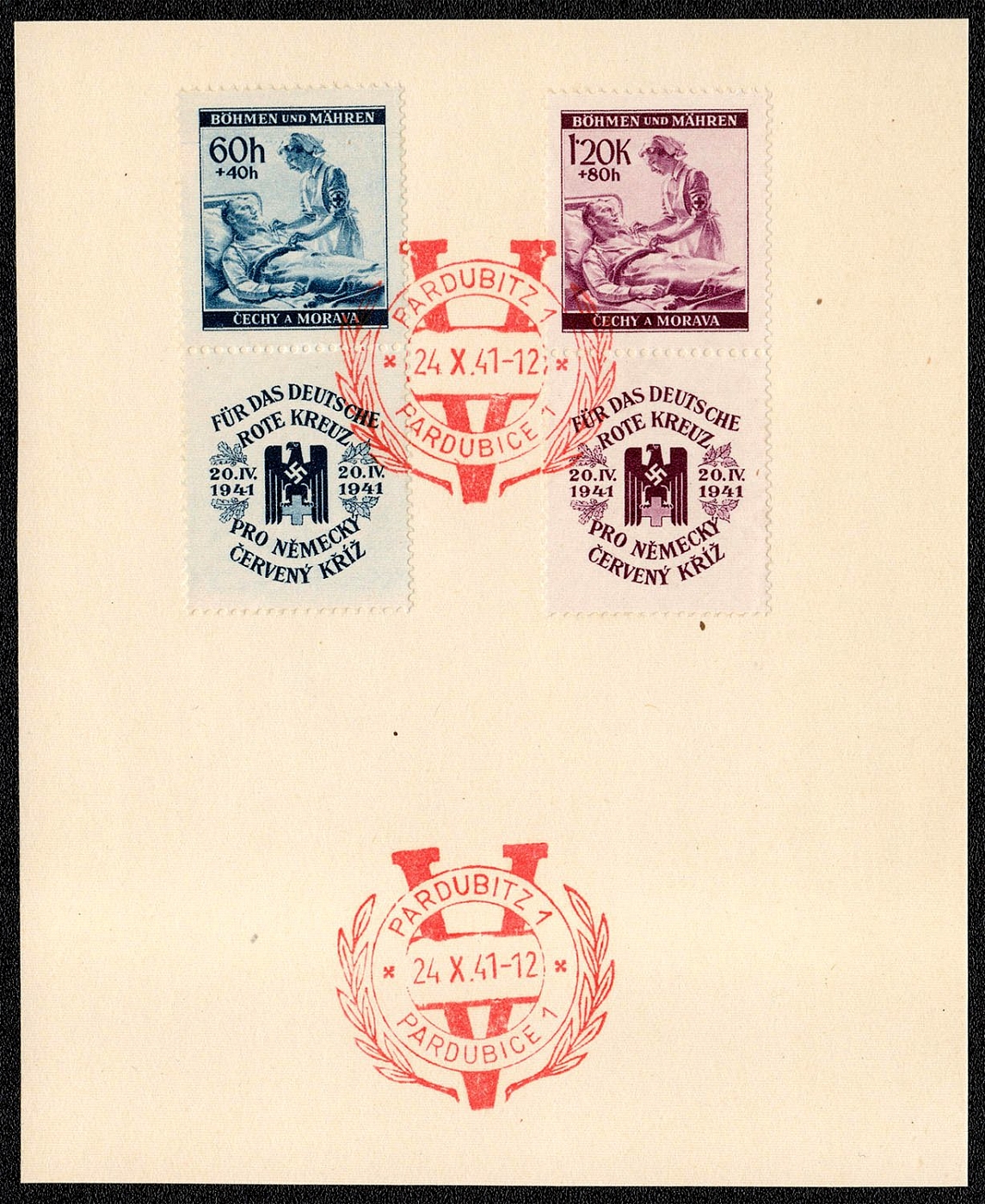
1941 Bohemia and Moravia German Protectorate Souvenir Sheet Red Cross Nurse and Patien
Red Cross Nurse and Patient The surtax was for the benefit of the German Red Cross. The souvenir card was cancelled 24 October 1941 in Pardubitz.
Sold for:
$10
689
-
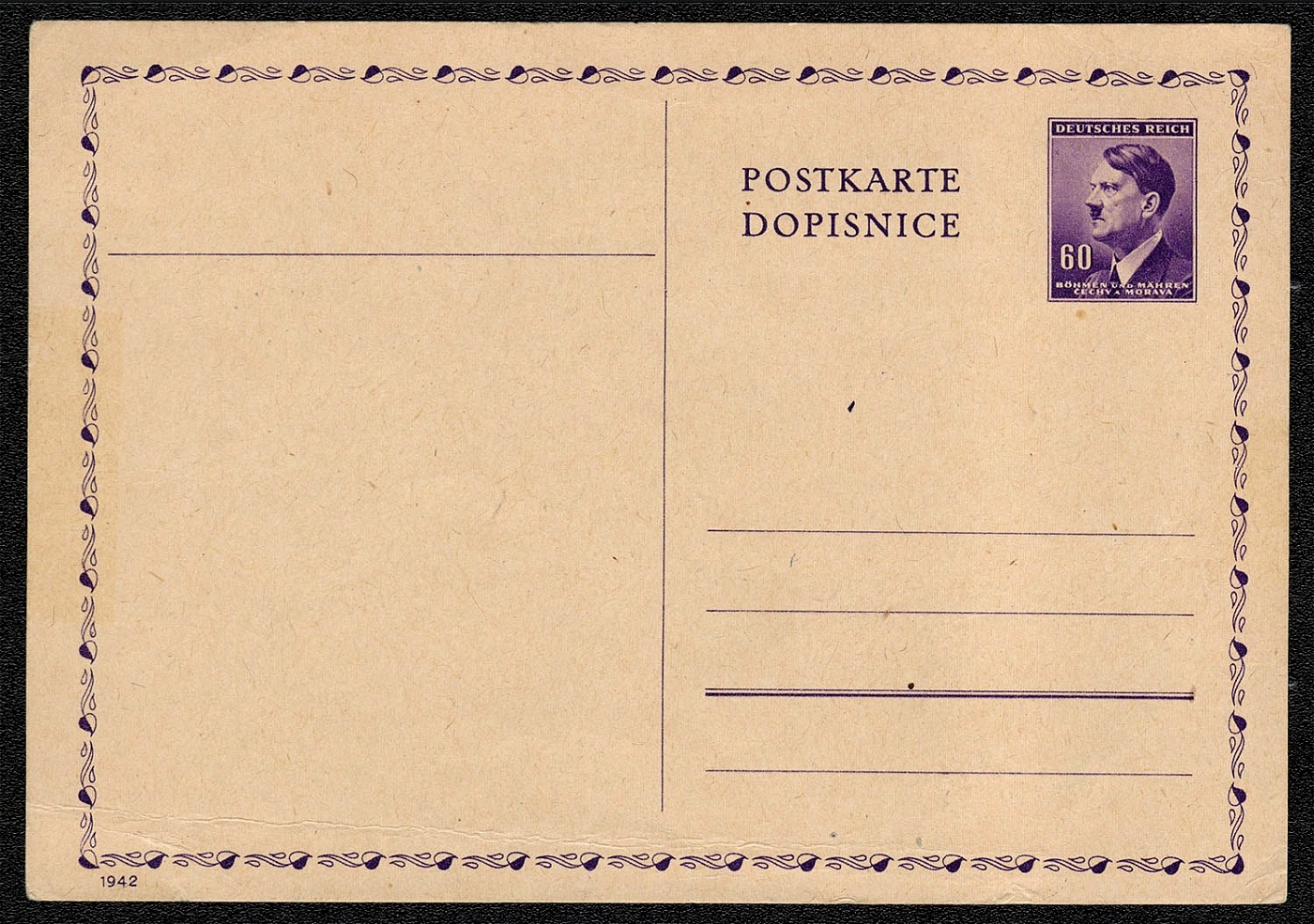
1942 Bohemia and Moravia German Protectorate Michel Pl5, postal card issued in 1942 with imprinted (photogravure) 6011 stamp.
Michel Pl5, postal card issued in 1942 with imprinted (photogravure) 6011 stamp.
Unsold
690
$10
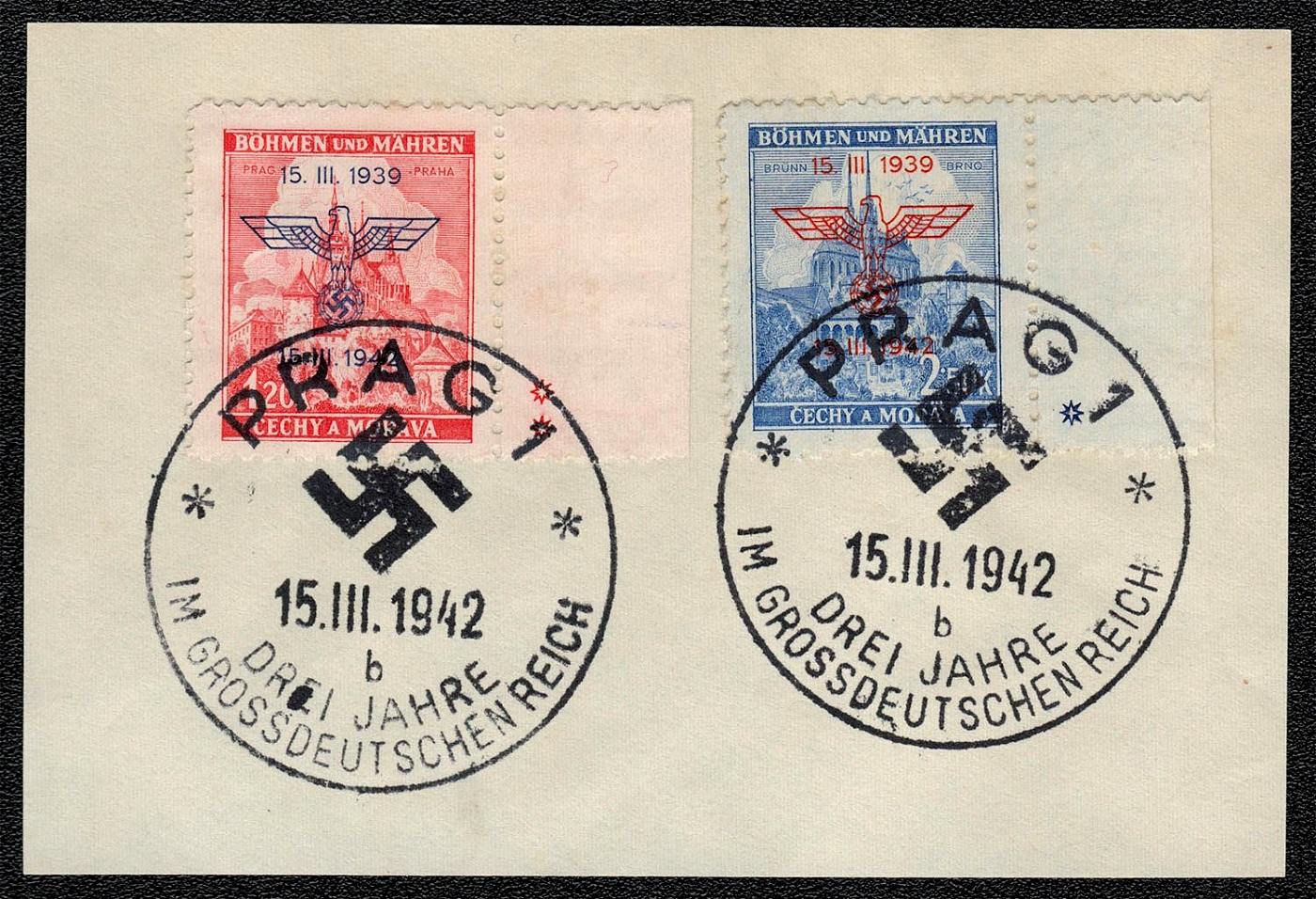
1942 Bohemia and Moravia German Protectorate First Day Sheetlet
First Day Sheetlet Prag, 15 March 1942 “Three Years in the Greater German Reich.” Acquired by: Franz Becker Prag 1, Volksstrasse 19.
Sold for:
$10
691
$10
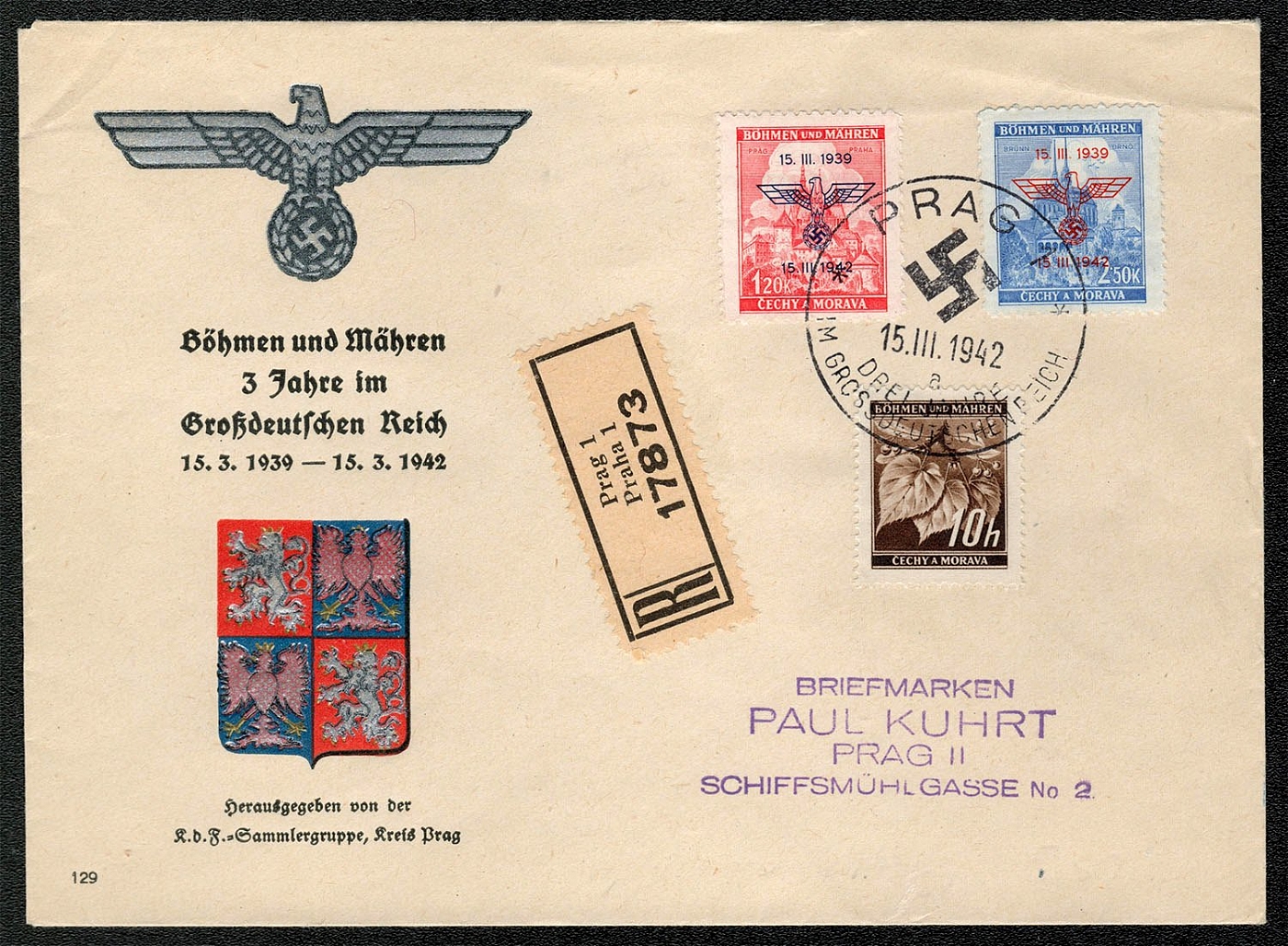
1942 Bohemia and Moravia German Protectorate First Day Cover 3rd Anniversary of the Founding of the Protectorate
Special Provisional Issue for the 3rd Anniversary of the Founding of the Protectorate. Prag, 15 March 1942 “Three Years in the Greater German Reich.” First Day Cover published by the Kreis Prag KdF Collectors Group additionally franked with Mi 21.
Sold for:
$10
692
$5
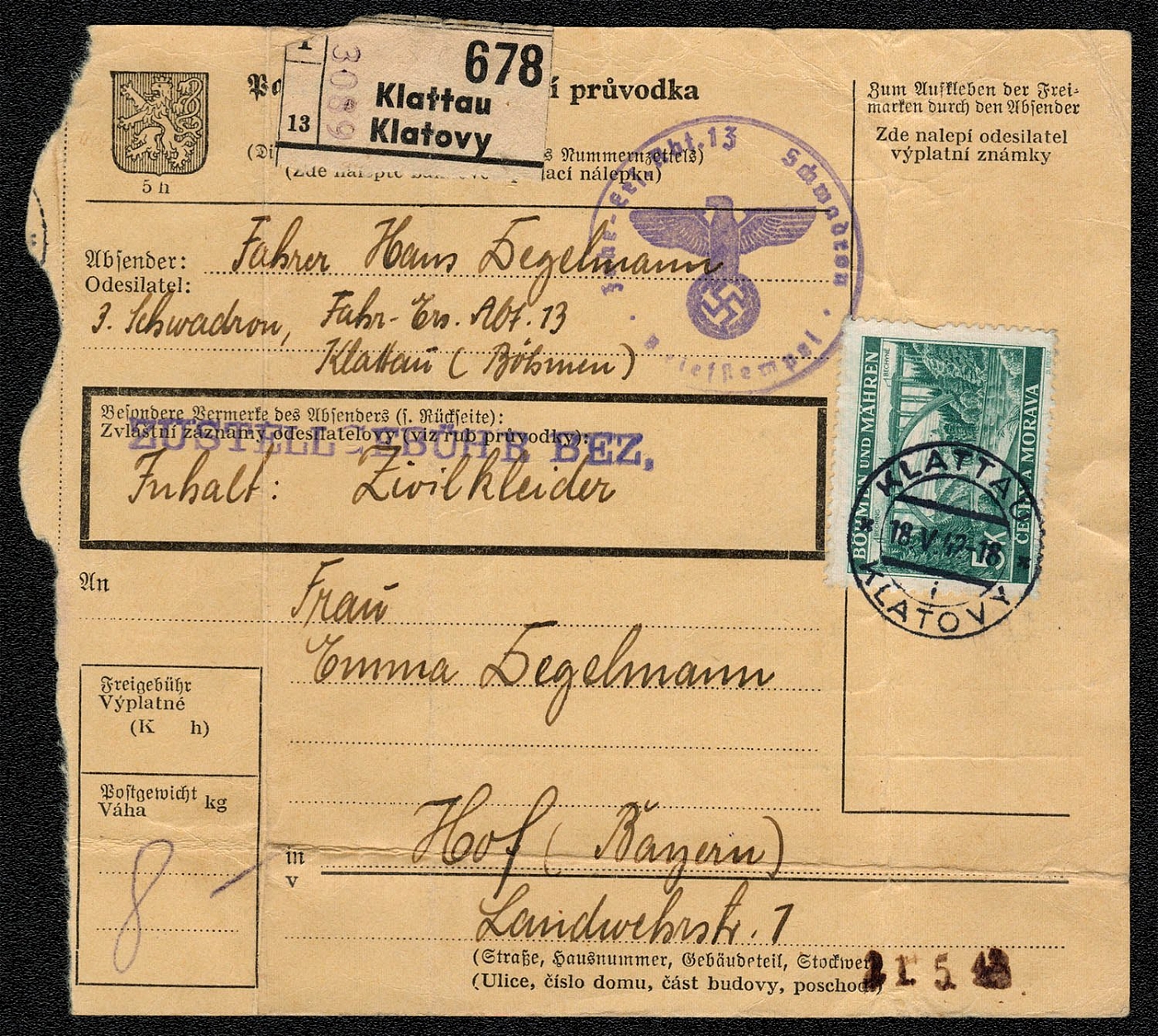
1942 Bohemia and Moravia German Protectorate Local district postal receipt franked with Scott 44 recording an 8 kg package
"Local district postal receipt franked with Scott 44 recording an 8 kg package sent from Klattau by Fuhrer Hans Degelmann on 18 May 1942 to his wife in Hof (Bayern). Klattau is a town 70 miles southwest of Prag in Bohmen. It was founded in the 13""’ century and is noted for its 16lh town hall."
Sold for:
$5
693
$5
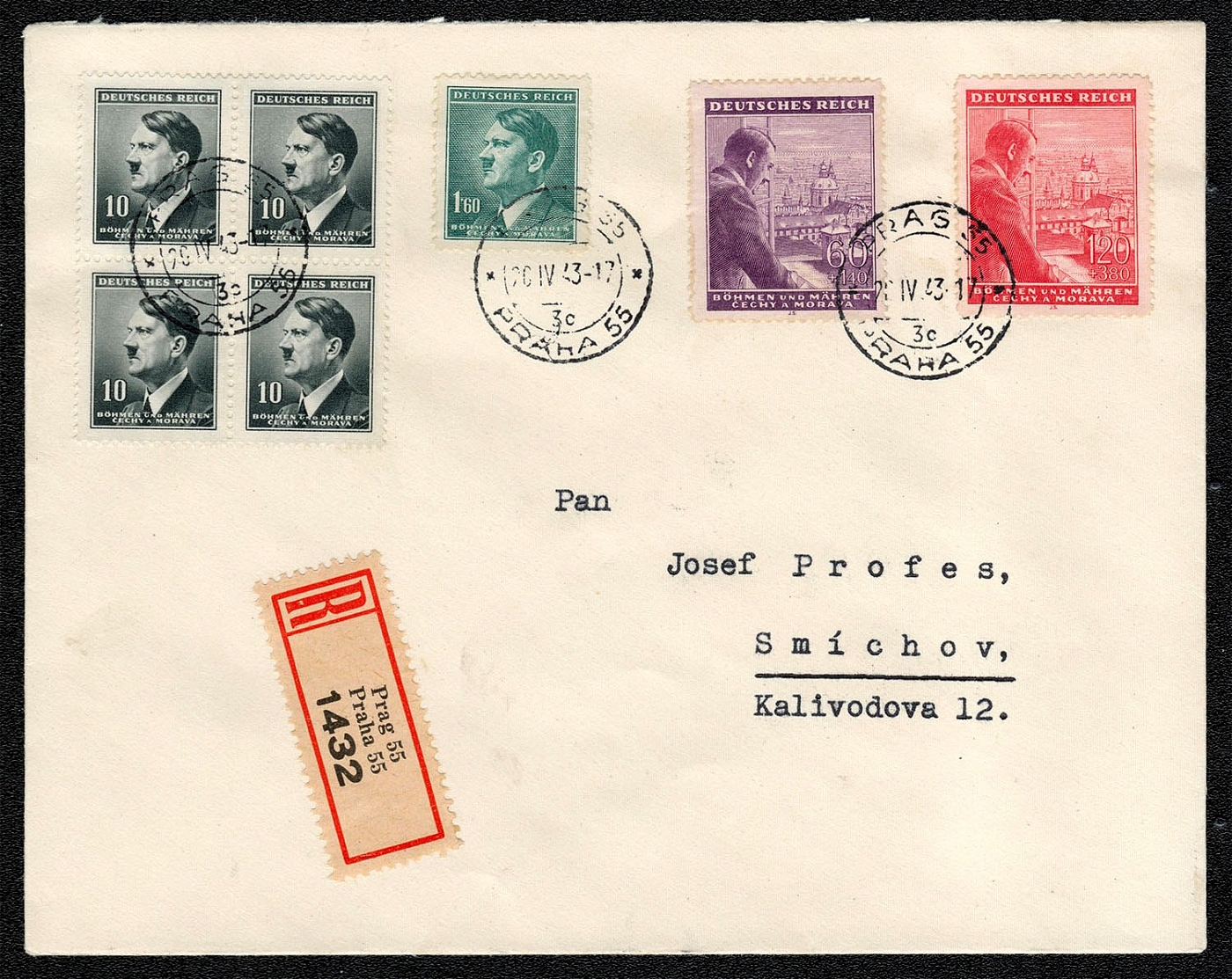
1942 Bohemia and Moravia German Protectorate First Day of Issue Cover Issued to commemorate Hitler’s 54,h birthday
Issued to commemorate Hitler’s 54,h birthday. The postally used cover was cancelled 20 April 1943 (on the first day of issue) in Prag. Additionally franked with a block of Scott No. 62 (10k) and Scott No. 71 (1.60k).
Sold for:
$5
694
$25
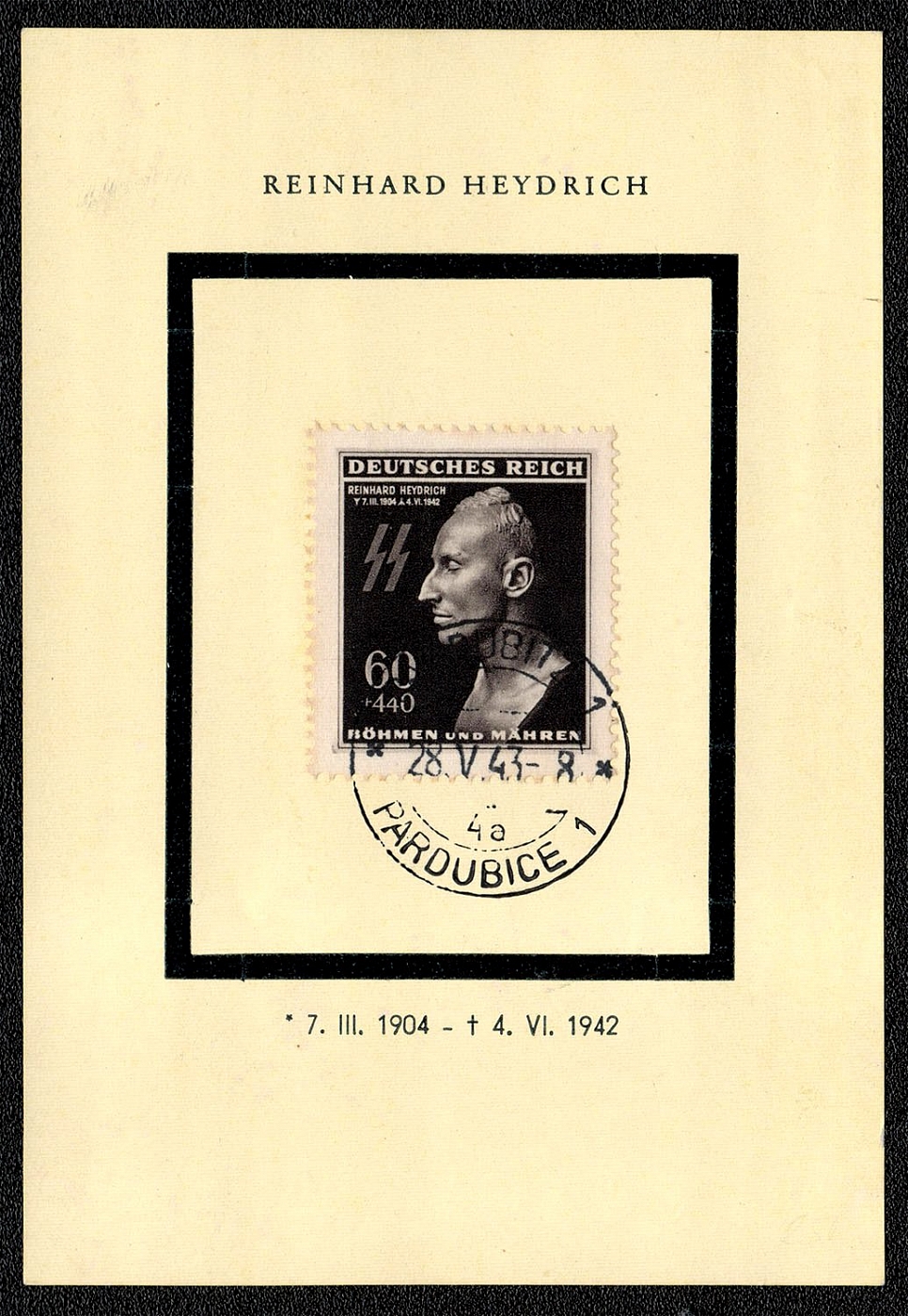
1942 Bohemia and Moravia German Protectorate First Anniversary of the Death of Heydrich
First Anniversary of the Death of Heydrich Souvenir sheet postmarked 28 May 1943, Pardubice 1.
Sold for:
$25
695
$25
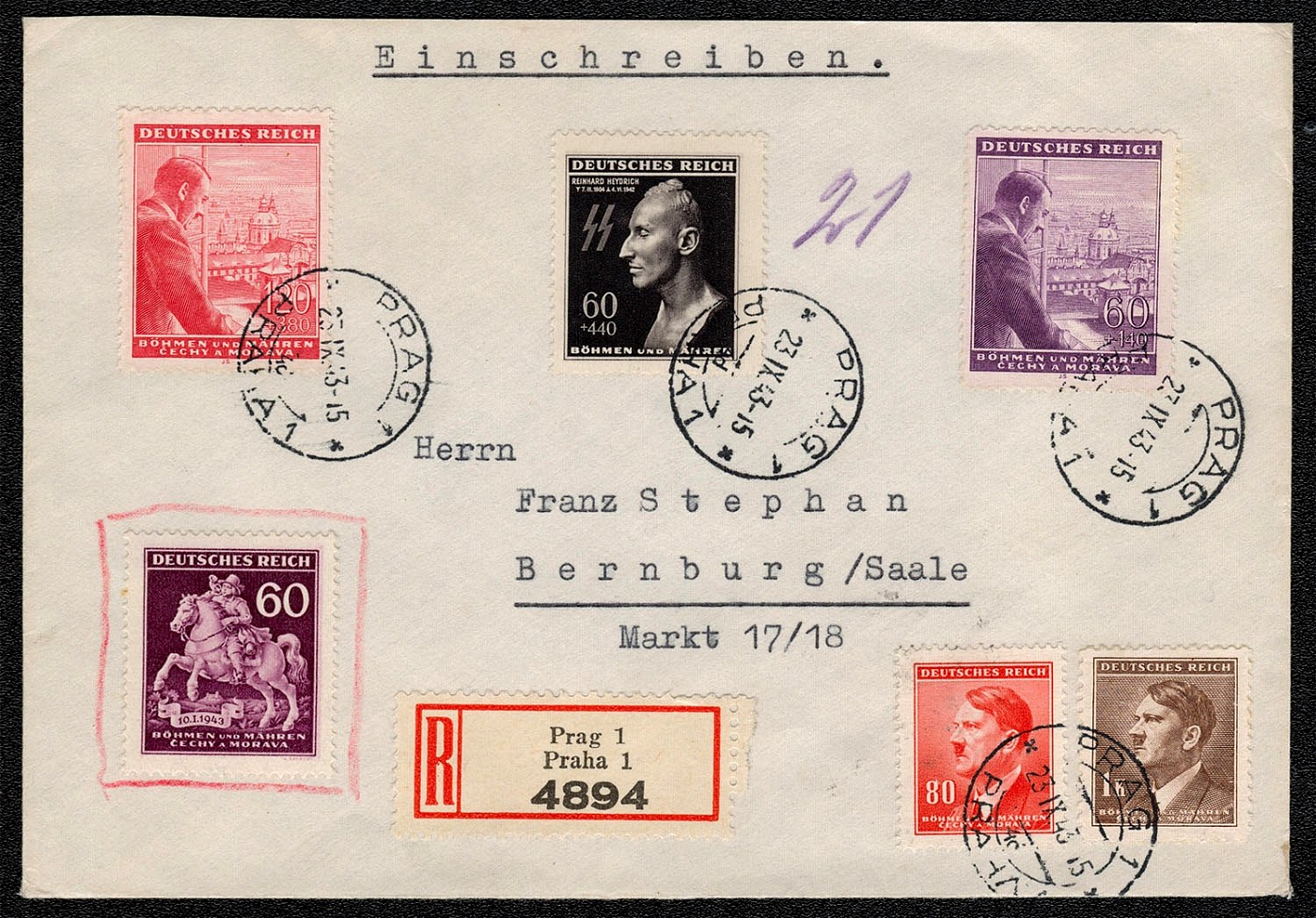
1942 Bohemia and Moravia German Protectorate Registered cover franked with Mi 67, 68, 126, 127 and 131. Mi 113, the uncancelled 60 h
Registered cover, philatelically prepared, but postally used. Franked with Mi 67, 68, 126, 127 and 131. Mi 113, the uncancelled 60 h, 1943 Tag der Briefmarke issue in the hand drawn red square cannot be explained at this time. If it were on the cover when it was placed in the mails, it would have been cancelled. Posted on 23 September 1943 in Prag 1. received on 24 September in Bernburg/Saale.
Sold for:
$25
696
-
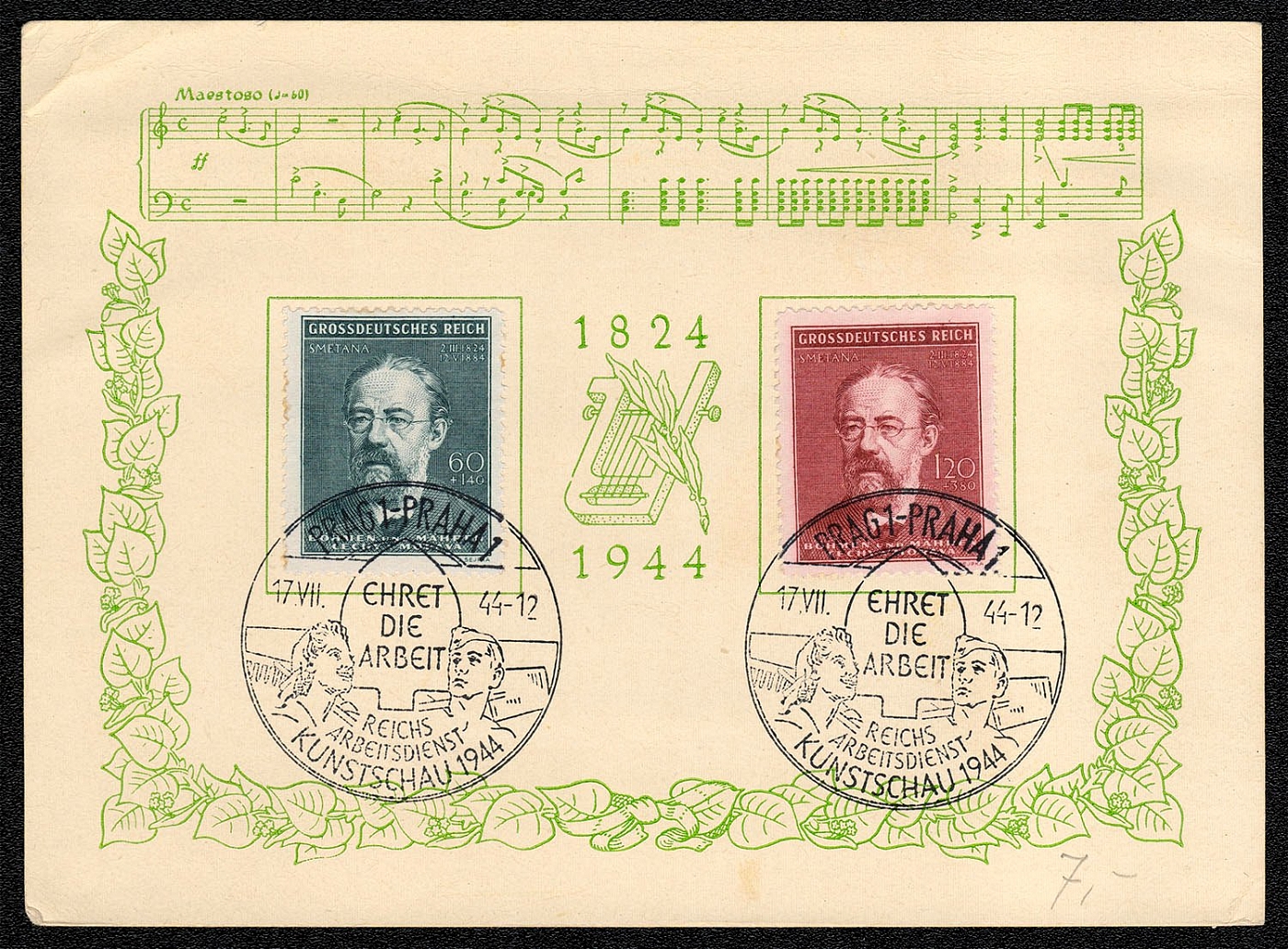
"1942 Bohemia and Moravia German Protectorate Souvenir card Issued to commemorate the 60""' Anniversary of the death of Friedrich Smetana"
"Friedrich Smetana Issued to commemorate the 60""' Anniversary of the death of Friedrich Smetana. Bohemian composer and pianist. Smetana was born 2 March 1824 in Leitomischl, Bohemia, Austrian Empire, and died 12 May 1884 in Prague. He was the first truly important Bohemian nationalist composer of operas and symphonic poems and the founder of the Czech national school of music. The souvenir card was cancelled 17 July 1944 in Prag at the Reichsarbeitsdiest (Labor Service) Art Show. The postmark slogan translates: The Honor of Work."
Unsold
697
-
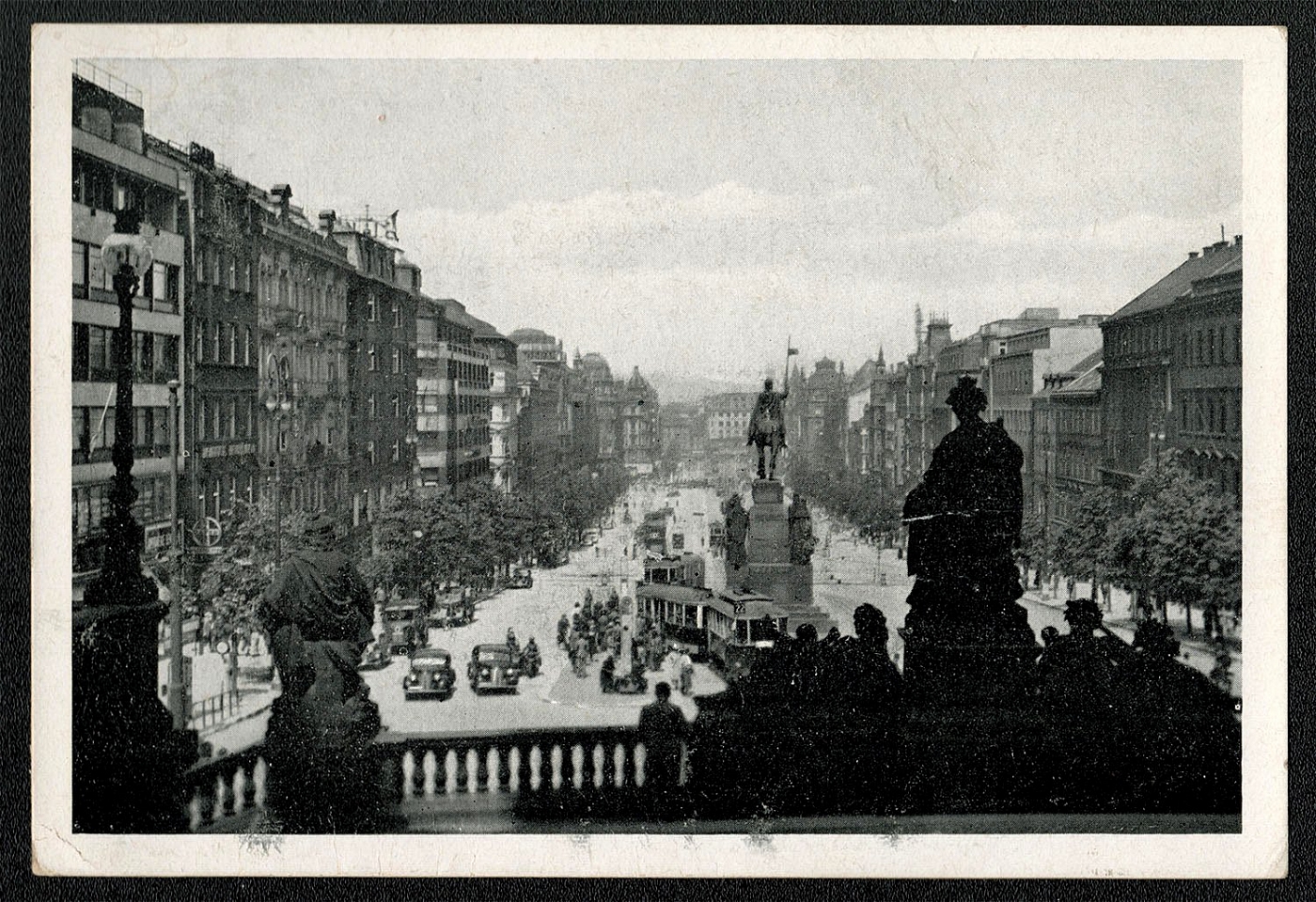
1944 Bohemia and Moravia German Protectorate This unniailed post card depicting the Wenzelplatz in Prag was franked with Mi 93
This unniailed post card depicting the Wenzelplatz in Prag was franked with Mi 93 and cancelled 23 July 1944 in Prag at the Reichsarbeitsdiest (Labor Service) Art Show. The postmark slogan translates: The Honor of Work.
Unsold
698
$9

1944 Bohemia and Moravia German Protectorate cover franked (Scott) No. 63 posted first in Prag and later franked with Germany (Scott) Nos. B281-2, and posted in Berlin
Postally used cover franked with Bohemia and Moravia (Scott) No. 63 posted first in Prag on 11 August 1944 and later franked with Germany (Scott) Nos. B281-2, and posted in Berlin on 23 August 1944. The Berlin special cancel exhorts Germans to “Pledge Your Sacrifice.”
Sold for:
$9
699
-
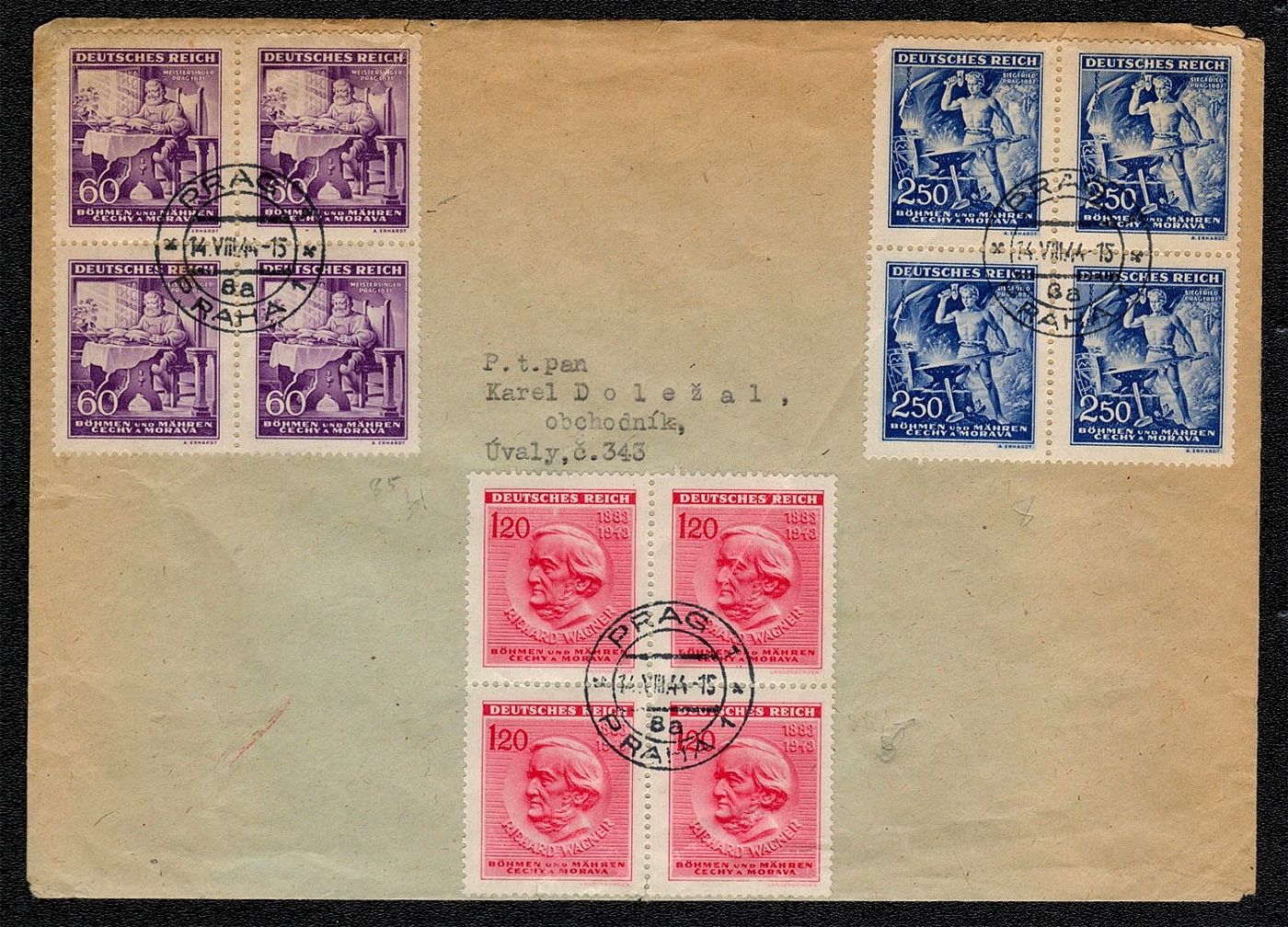
1944 Bohemia and Moravia German Protectorate cover franked Scott Nos. 85-87 in blocks of four
"Postally used cover franked with Scott Nos. 85-87 cancelled in Prag on 14 August 1944. The issue, in blocks of four, commemorates the 130""' anniversary of the birth of Richard Wagner (1813-83). An interesting aspect of this cover is the date of the postmark (14 August 1944)."
Unsold
700
$10
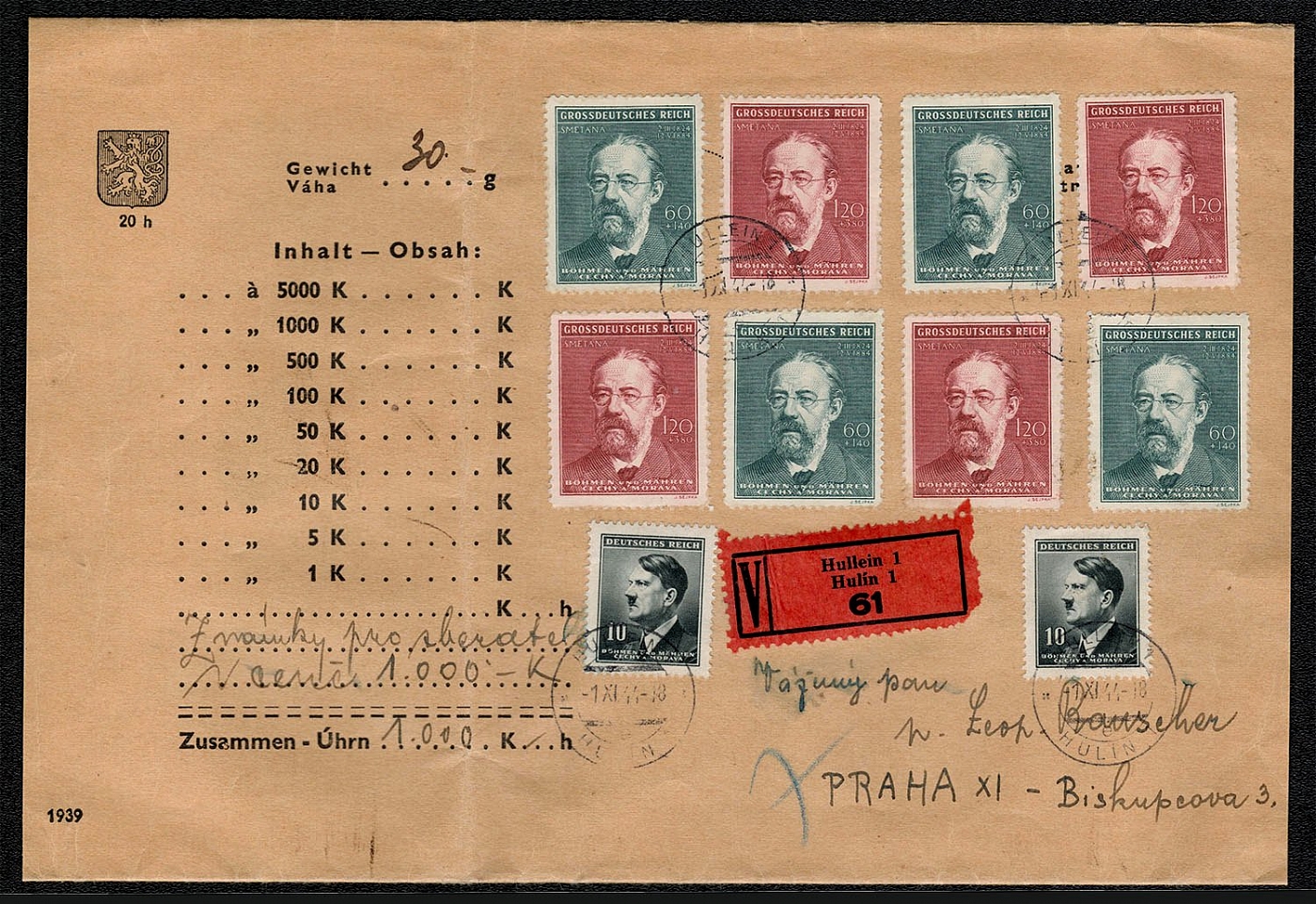
1944 Bohemia and Moravia German Protectorate registered commercial cover franked with four pair of Scott B27-28 (Michel 138-139) and additionally franked with Scott 62 (Michel 89)
Philatelically prepared, but registered commercial cover franked with four pair of Scott B27-28 (Michel 138-139) and additionally franked with Scott 62 (Michel 89) addressed to Praha XI, and posted: 1 November 1944 Hullein 1. Hullein (or Huh'n) is approximately 200 miles southwest of Praha.
Sold for:
$10
701
$25
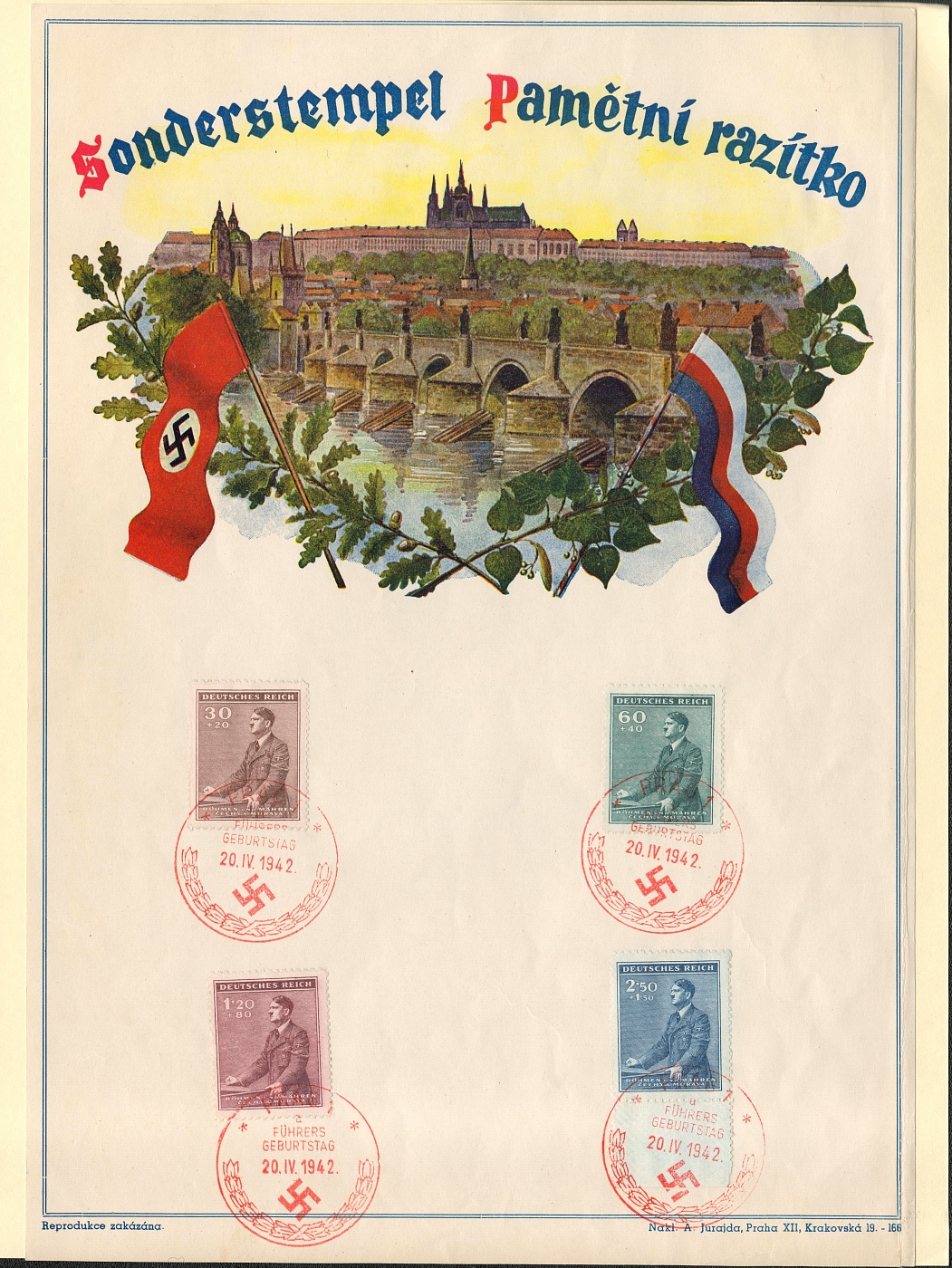
1942 Bohemia and Moravia German Protectorate Souvenit Sheet Hitler’s birthday
1942 Bohemia and Moravia German Protectorate Souvenit Sheet Hitler’s birthday
Sold for:
$25
702
$5
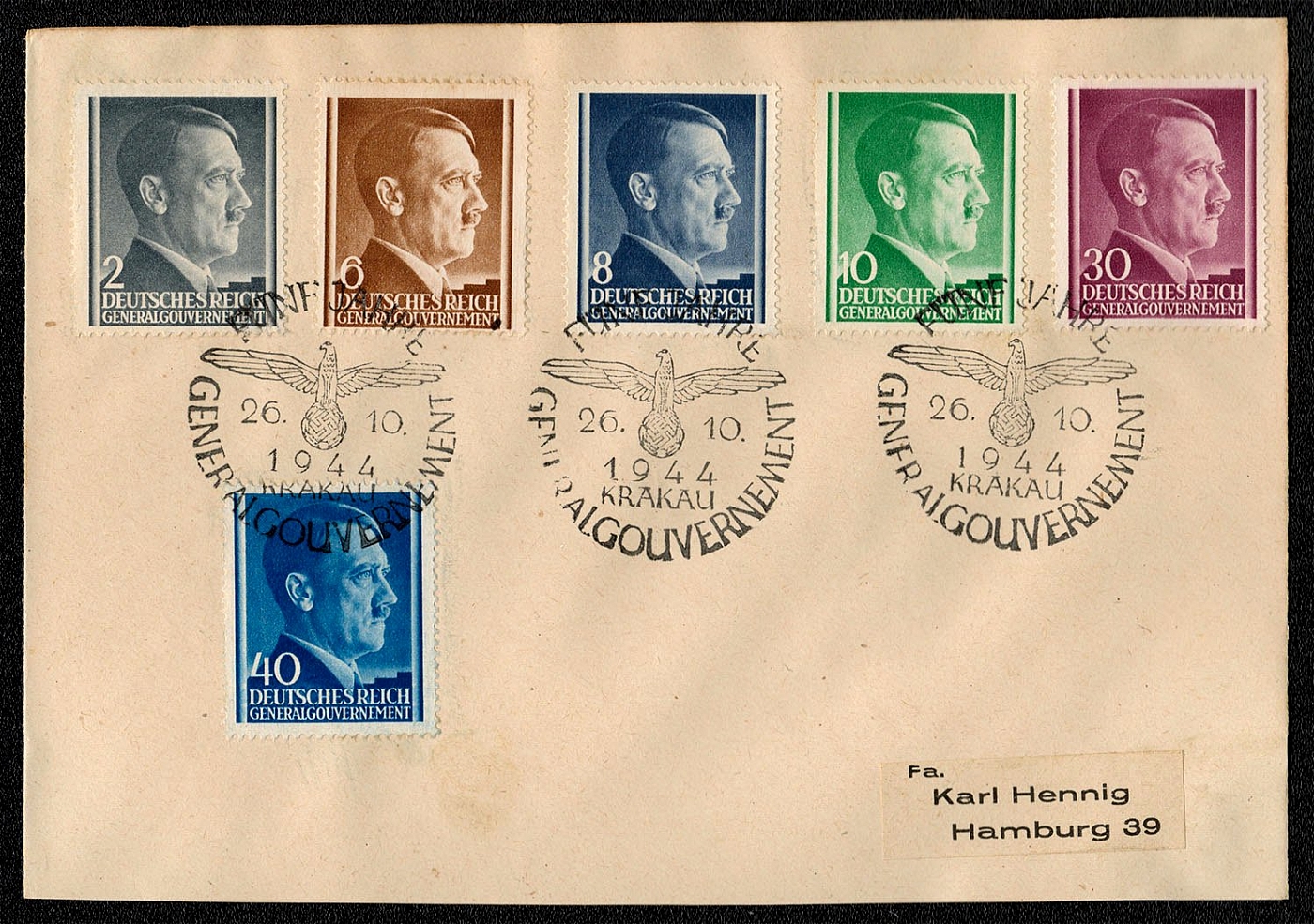
1944 General Government Scott No. N76-79, N84 and N86 tied to cover with a special cancellation commemorating Five Years of Occupation Government
Above: Scott No. N76-79, N84 and N86 tied to cover with a special cancellation commemorating Five Years of Occupation Government. Posted in Krakau, 26 October 1944.
Sold for:
$5
Lot Number
Price
703
$5

1944 General Government Scott No. N80-83, N85 and N87 tied to cover with a special cancellation commemorating Five Years of Occupation Government
Above: Scott No. N80-83, N85 and N87 tied to cover with a special cancellation commemorating Five Years of Occupation Government. Posted in Krakau, 26 October 1944.
Sold for:
$5
704
$5
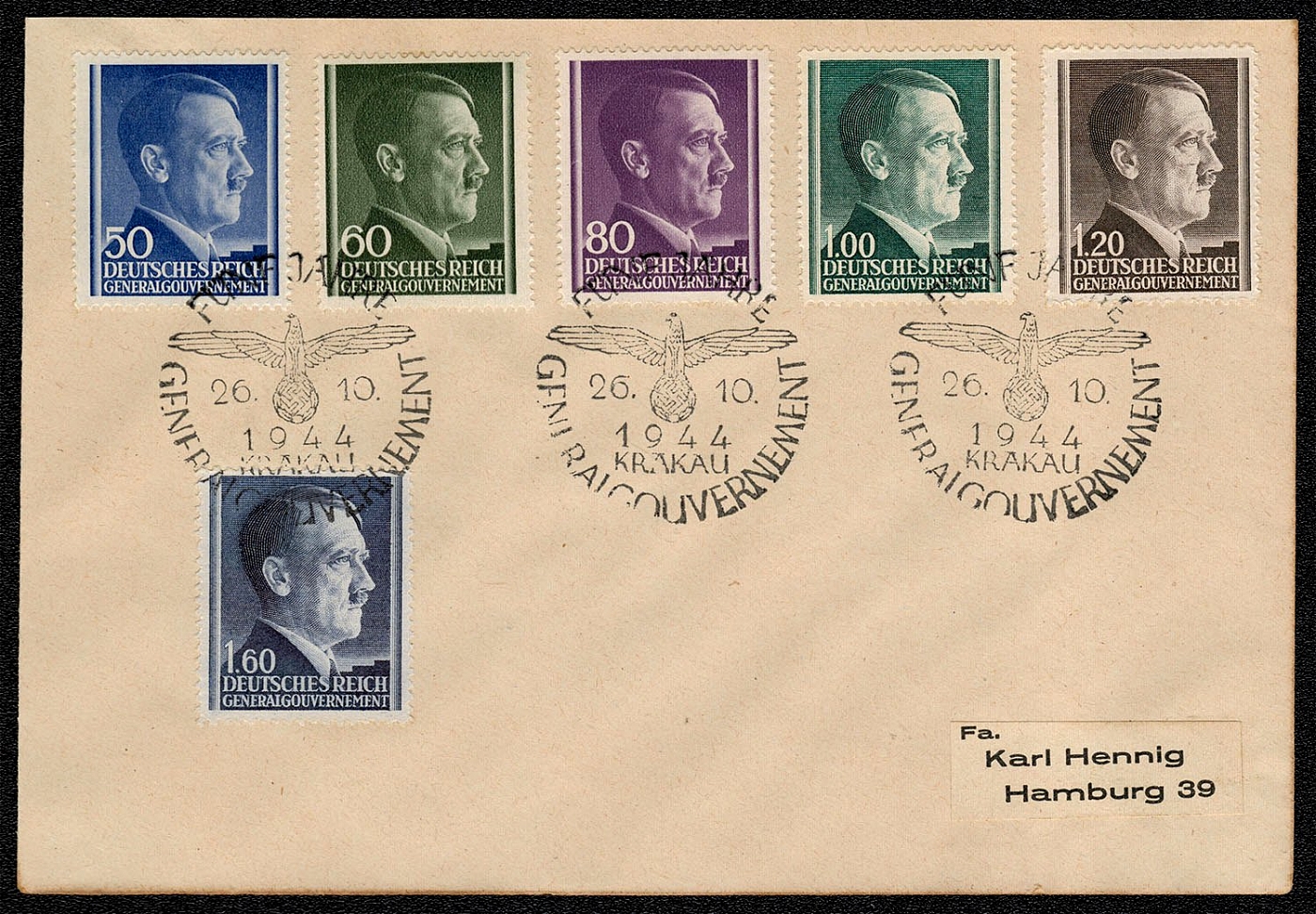
1944 General Government Scott Nos. N91-96 tied to cover with a special cancellation commemorating Five Years of Occupation Government
Philatelically prepared cover franked with Scott Nos. N91-96 posted in Krakau, 26 October 1944 with the Fifth Anniversary of the Generalgouvernement Gelegenheitsstempel (special cancel).
Sold for:
$5
705
$25
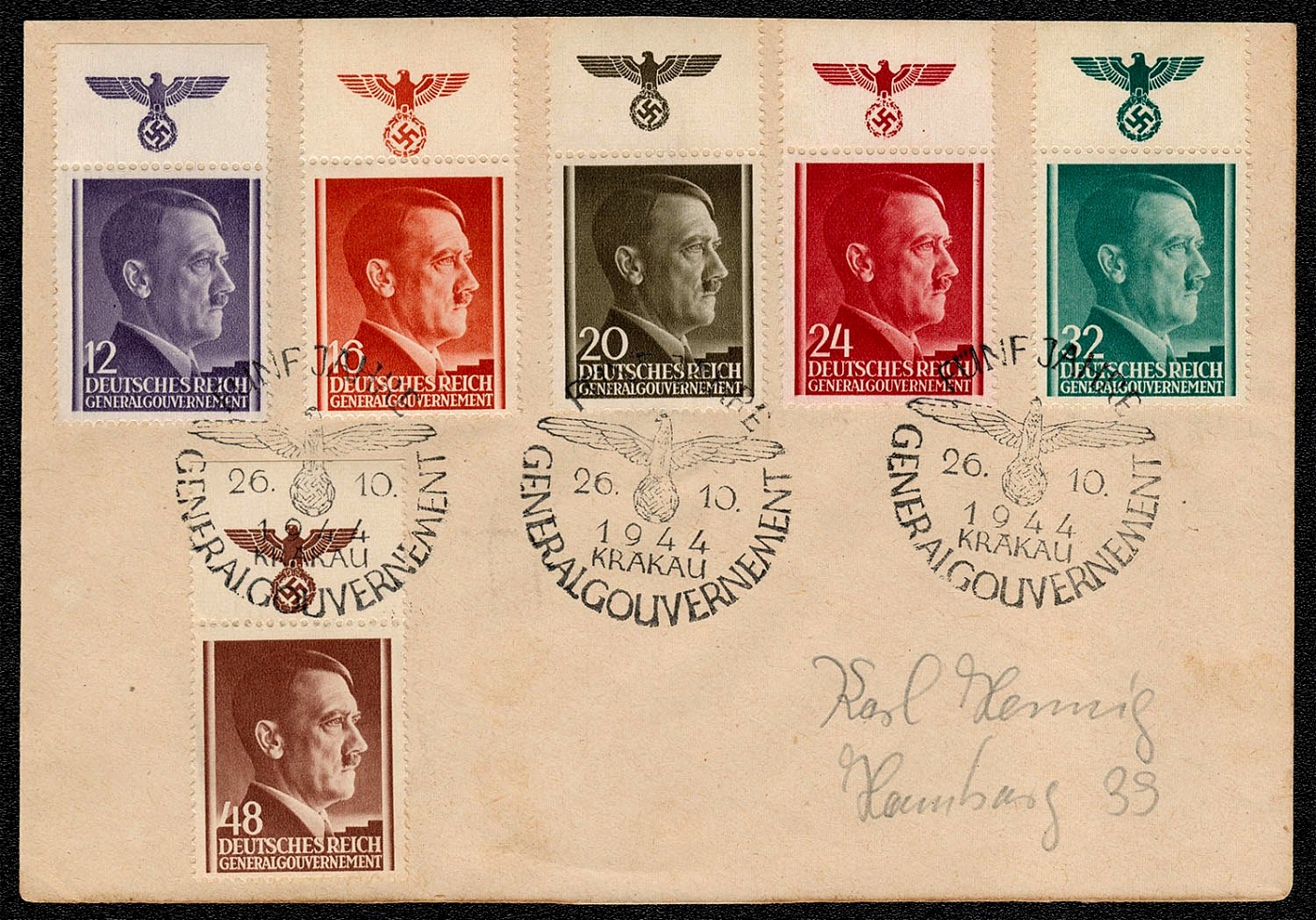
1944 General Government Scott Nos. N80-83, N85 and N87 with swastika tabs cover with a special cancellation commemorating Five Years of Occupation Government
Above: Scott Nos. N80-83, N85 and N87 with swastika tabs tied to cover with a special cancellation commemorating Five Years of Occupation Government. Posted in Krakau, 26 October 1944. The covers in this selection were originally cancelled to order by the Generalgouvernement Postal Service for the philatelic firm of Karl Hennig, then located in Hamburg.
Sold for:
$25
706
$5
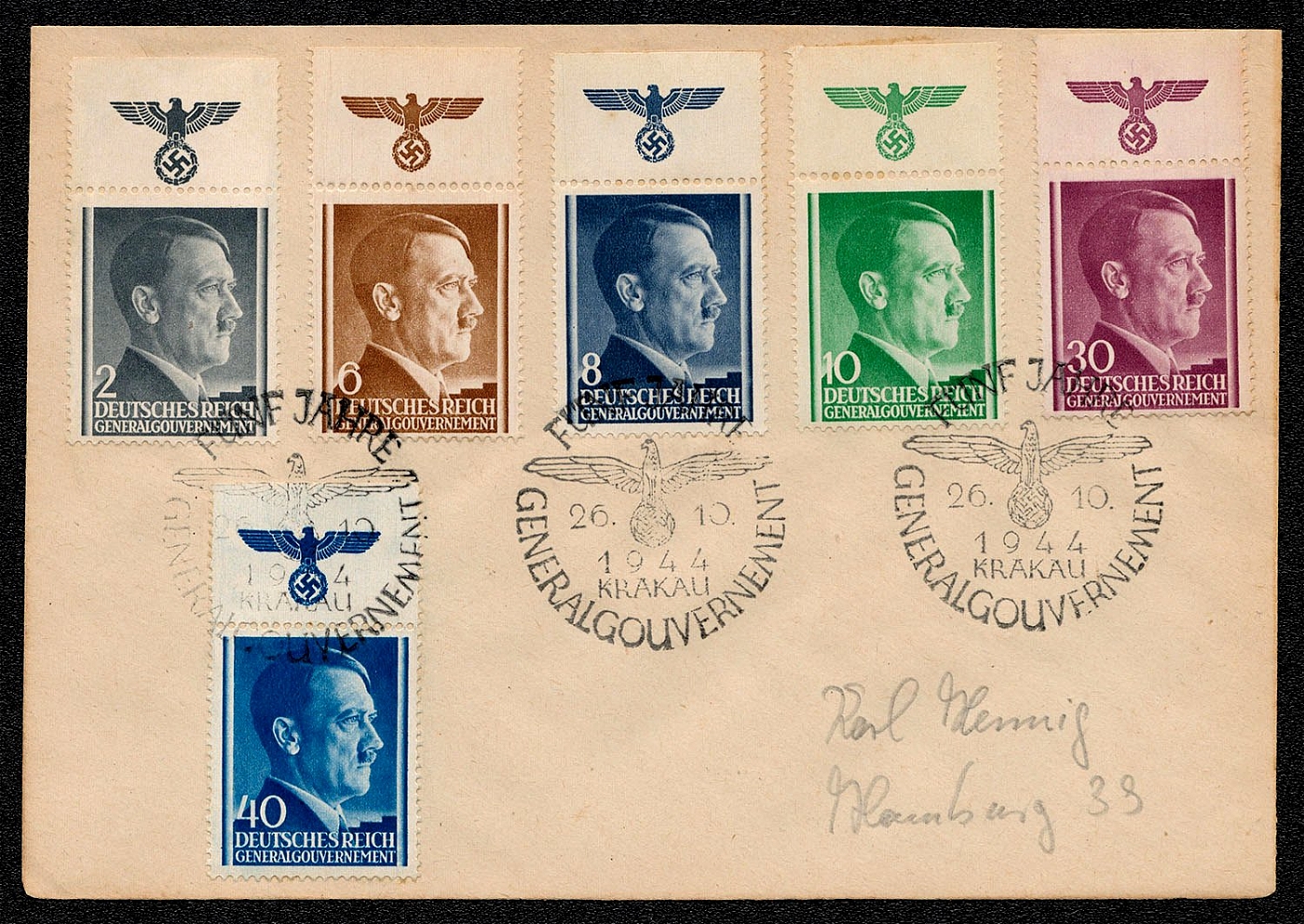
1944 General Government Scott Nos. N76-79, N84 and N86 with swastika tabs cover with a special cancellation commemorating Five Years of Occupation Government
Above: Scott Nos. N76-79, N84 and N86 with swastika tabs tied to cover with a special cancellation commemorating Five Years of Occupation Government. Posted in Krakau, 26 October 1944. Swastika tabs are very scarce as they existed only twice in one full sheet of stamps and were usually discarded. Their use on covers is practically unknown.
Sold for:
$5
707
$7
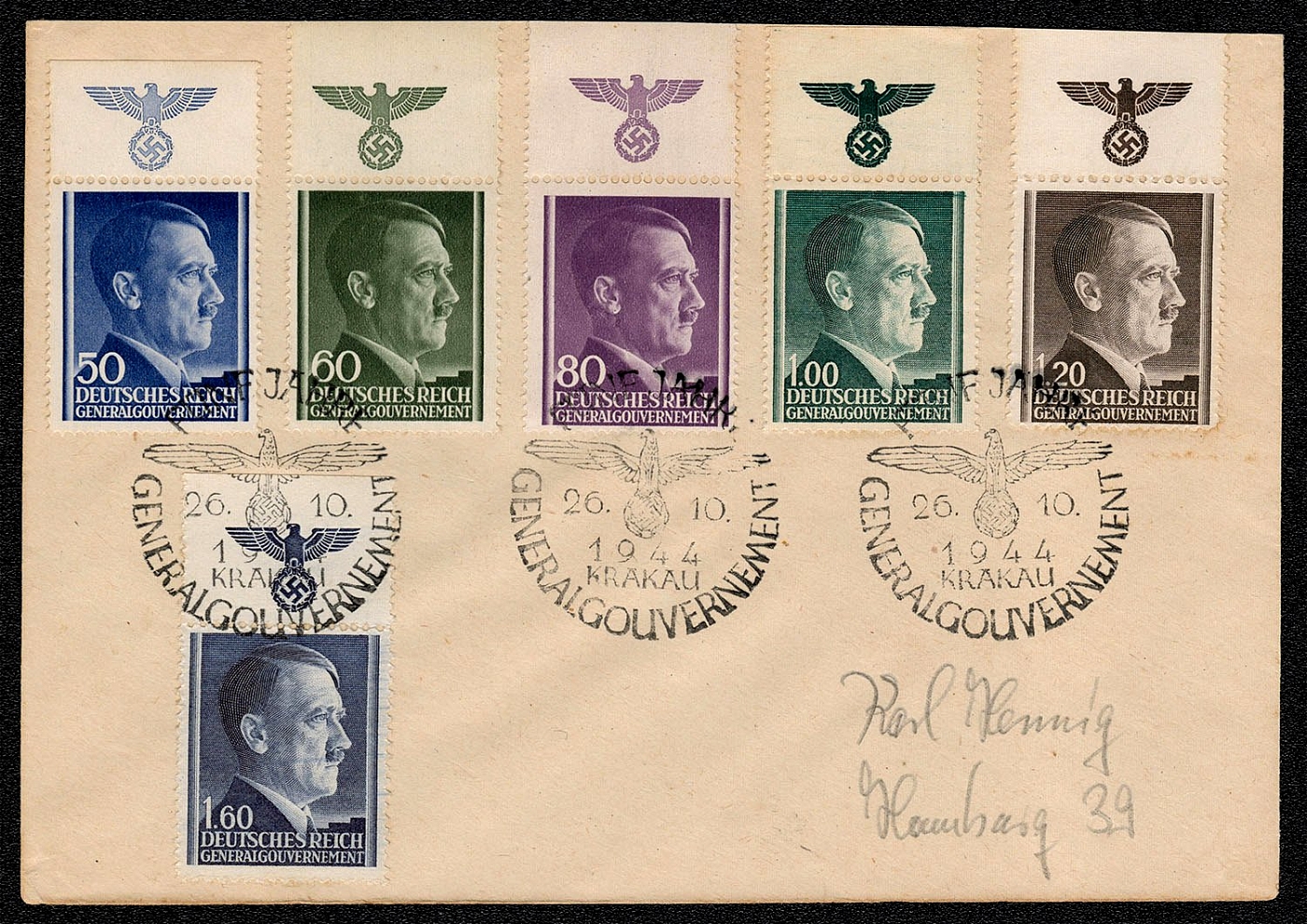
1944 General Government Scott Nos. N91-96 with swastika tabs cover with a special cancellation commemorating Five Years of Occupation Government
Above: Scott Nos. N91-96 with swastika tabs tied to cover with a special cancellation commemorating Five Years of Occupation Government. Posted in Krakau, 26 October 1944. These covers are addressed to the philatelic house of Karl Hennig, originally established in Hamburg in 1913. That company exists today under the name of Casa Filatelica Antiliana. It is now located in Santo Domingo, Republica Dominicana and is operated by Werner Hennig, a descendent of the founder.
Sold for:
$7
708
$10
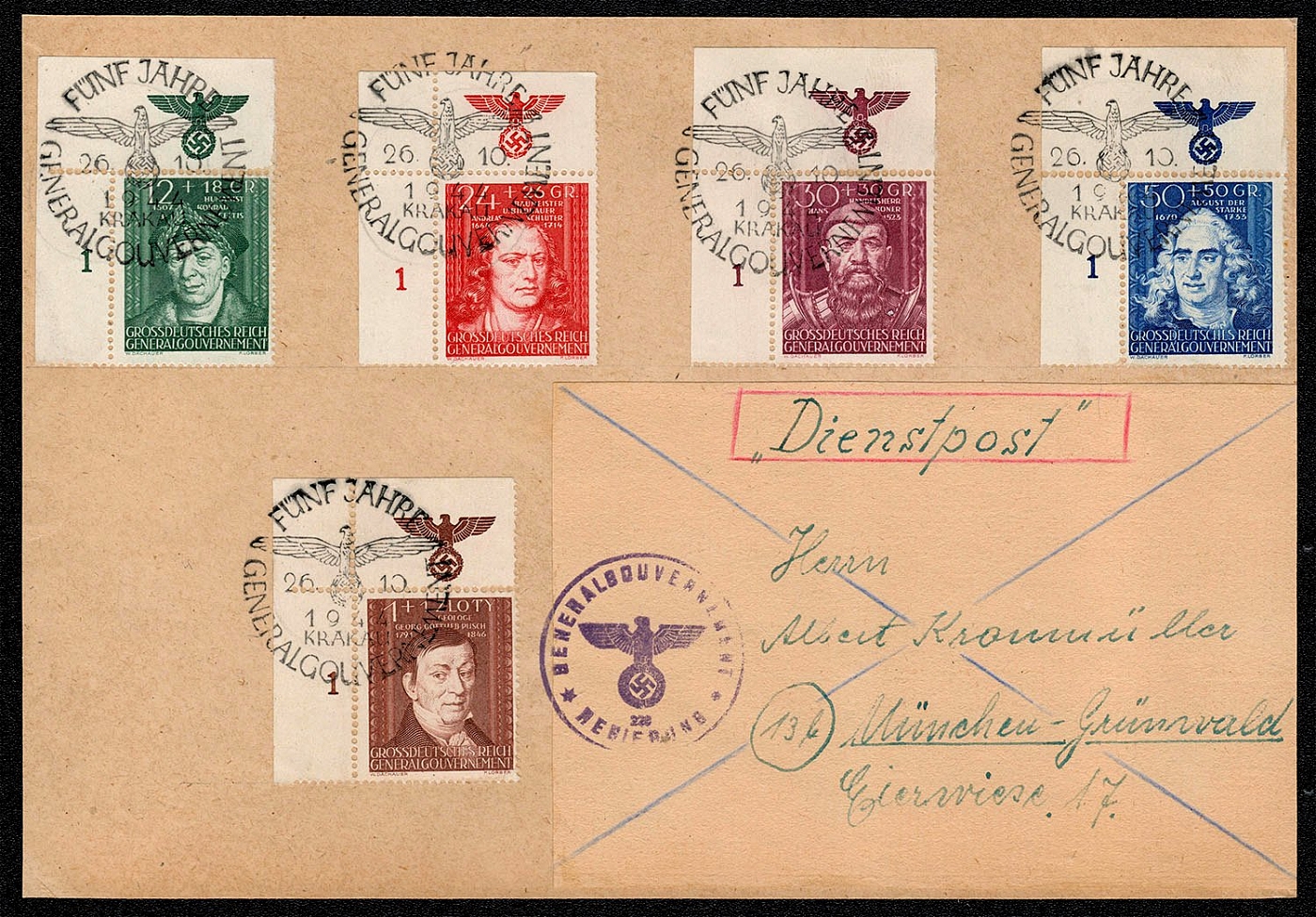
1944 General Government official cover franked with the complete 1944 Culture Fund issue
Philatelically prepared, but postally used official mailing franked with the complete 1944 Culture Fund issue with the Gelegenheitsstempel (special cancel) commemorating the Fifth Anniversary of the Generalgouvernement. 26 October 1944 Krakau
Sold for:
$10
709
-
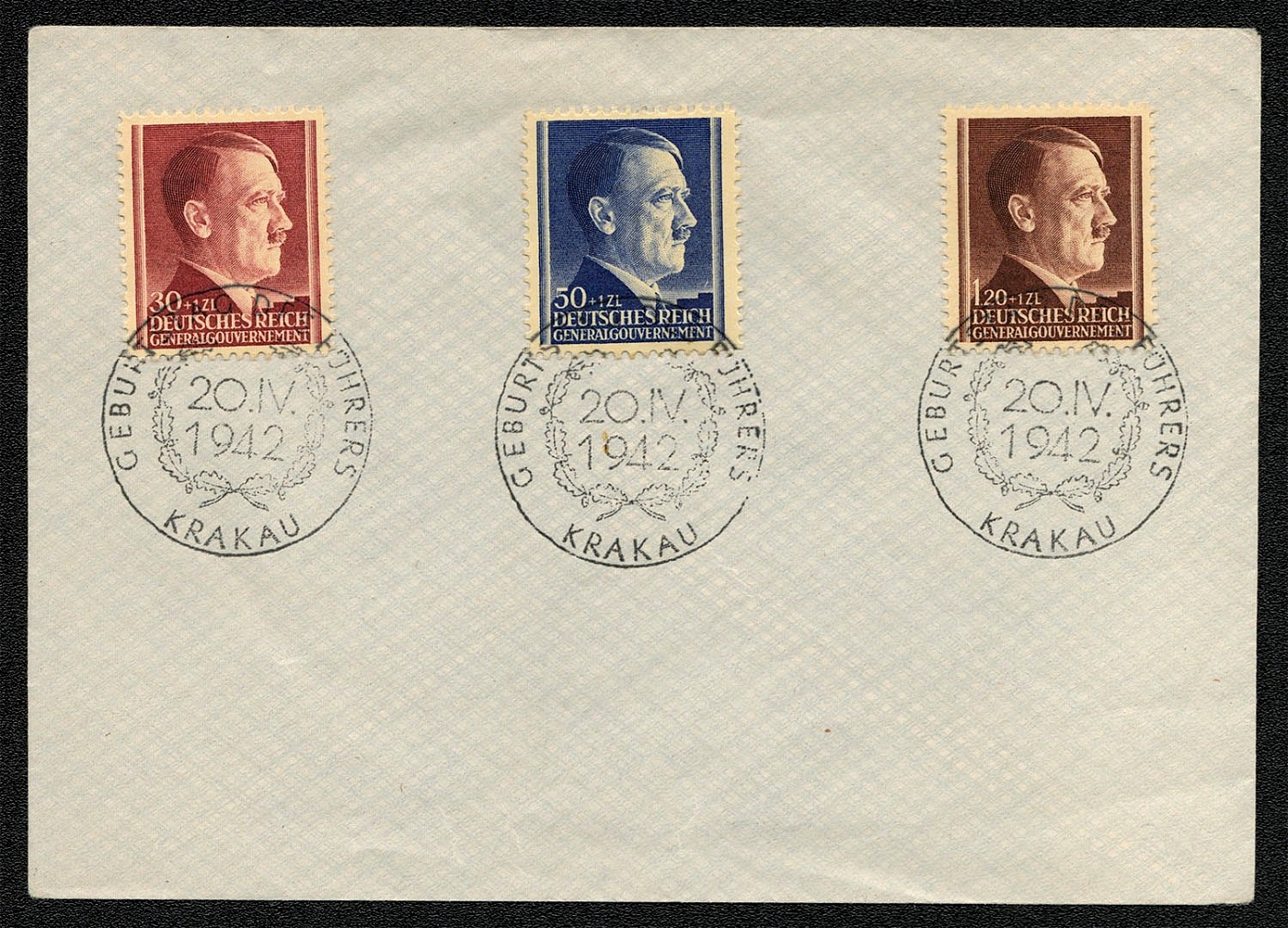
1942 General Government Hitler’s 53rd Birthday Souvenir sheet franked with Scott Nos. NB12-NB14.
Hitler’s 53rd Birthday Souvenir sheet franked with Scott Nos. NB12-NB14. Krakau 20 April 1942 The Sonderstempel (special cancellation) commemorating Hitler’s 53rd birthday depicts the date encircled by an oak leaf wreath, and was used only in Krakau.
Unsold
710
-
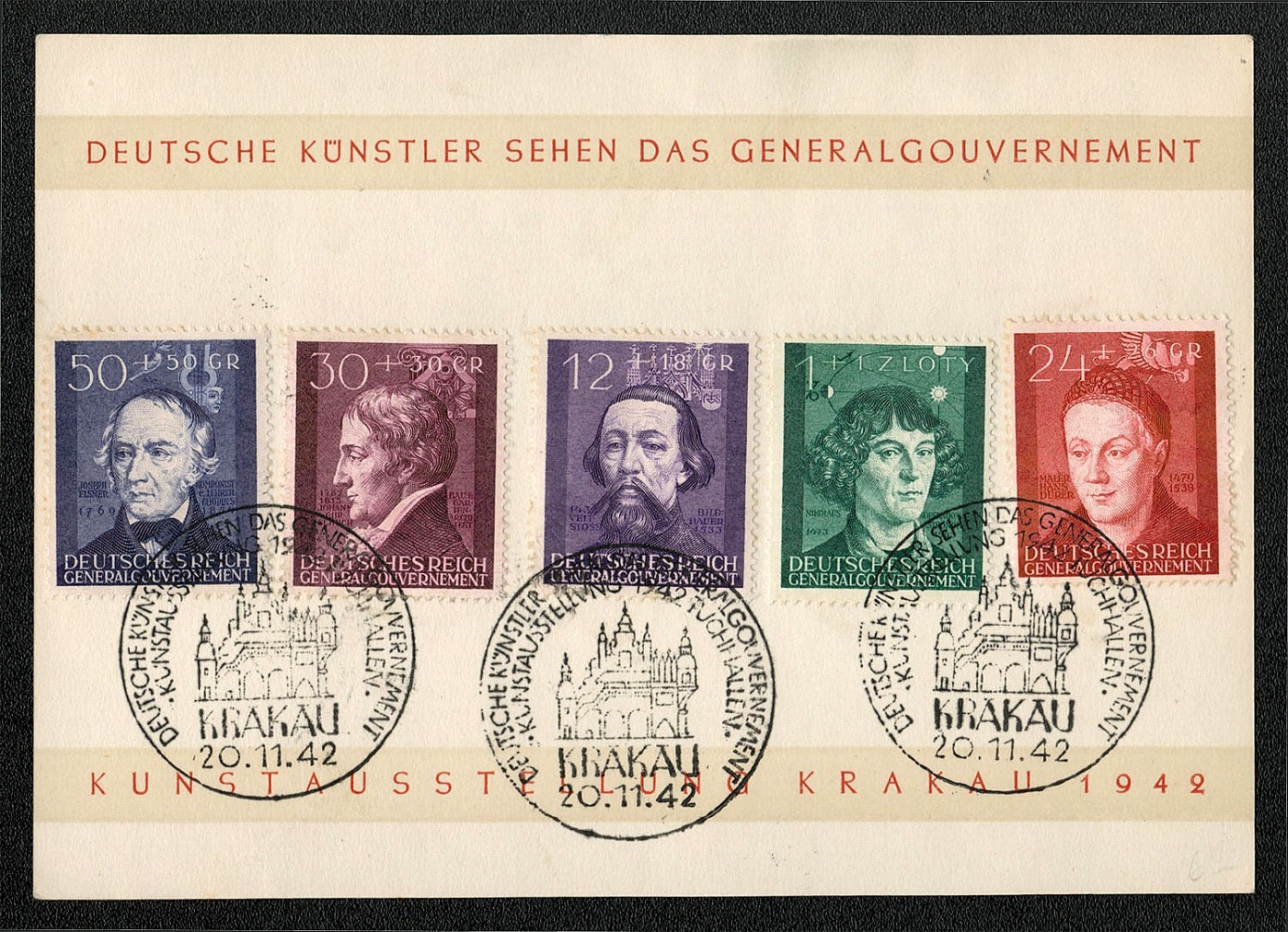
1942 General Government Art Exhibition Souvenir card franked with Scott Nos. NB19-NB23.
See the German Artists of the Generalgouvemement Art Exhibition Krakau 1942 Souvenir card franked with Scott Nos. NB19-NB23. Krakau 20 November 1942 The Werbestempel (publicity slogan cancellation) commemorating the art exhibition depicts a stylistic drawing of the old historical structure Sukiennice Hall in Krakau.
Unsold
711
-
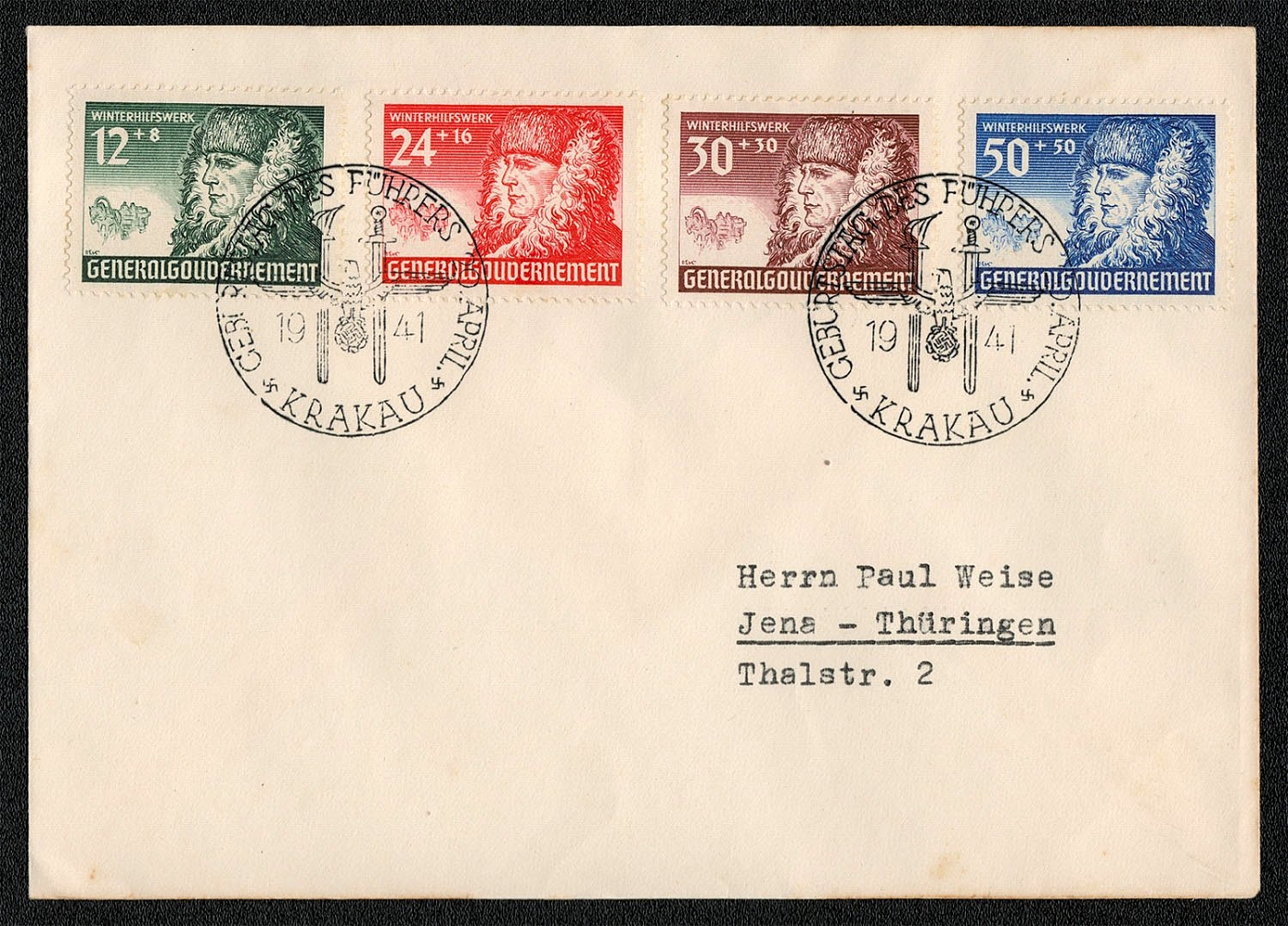
"1941 General Government First Anniversary of the Generalgouvernement Special Postmark Hitler’s 52""d birthday"
"Philatelically prepared cover franked with multiple values of the engraved stamps commemorating the First Anniversary of the Generalgouvernement. Postmarked: 20 April 1941 Krakau. Although addressed, in as much as the envelope was never sealed, it is assumed that rather than going through the mails, it was franked and cancelled as a souvenir sheet. The Gelegenheitsstempel (special cancel) was issued to commemorate Hitler’s 52""d birthday and depicts the NSDAP eagle emblem with a flaming torch and a sword in the background. It was also used in Warschau, Radom and Lublin for several days."
Unsold
712
$5
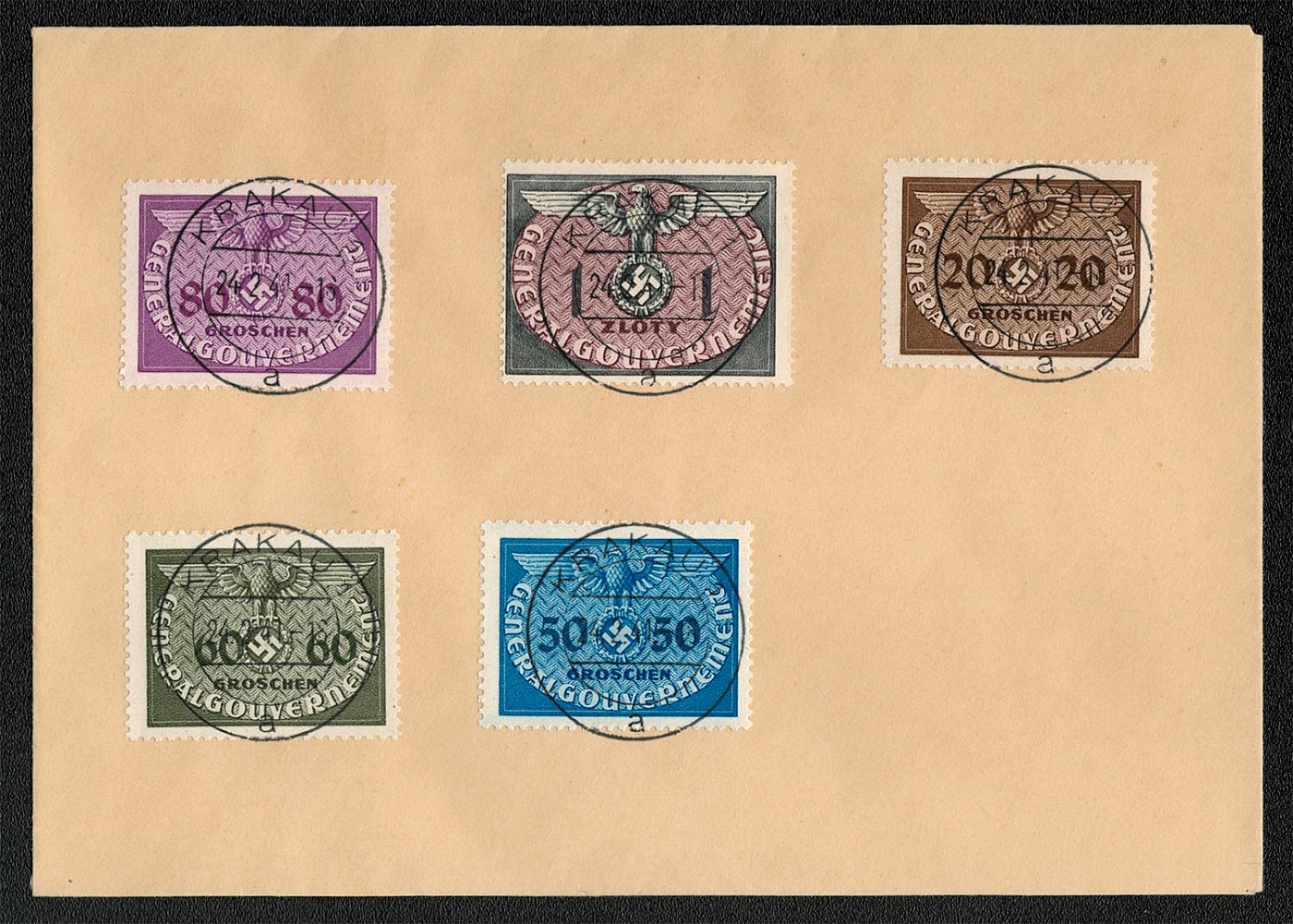
1940 General Government Impromptu souvenir card with the 20, 50, 60, 80 Gr. and 1 Zl.
Impromptu souvenir card with the 20, 50, 60, 80 Gr. and 1 Zl. values of the 1 April 1940 Dienstmarken Issue postmarked Krakau 24 February 1941. In most cases prior to 1 April 1940, German occupation officials used rubber markings to identify their functional offices in lieu of stamps. The postal authorities suspected that this official franking was being misused and introduced official stamps. Most of the officials in occupied Poland utilized them, but in many instances, the more prominent Nazis, including postal officials, still used the official rubber mark on their mail instead of official postage stamps.
Sold for:
$5
713
$5
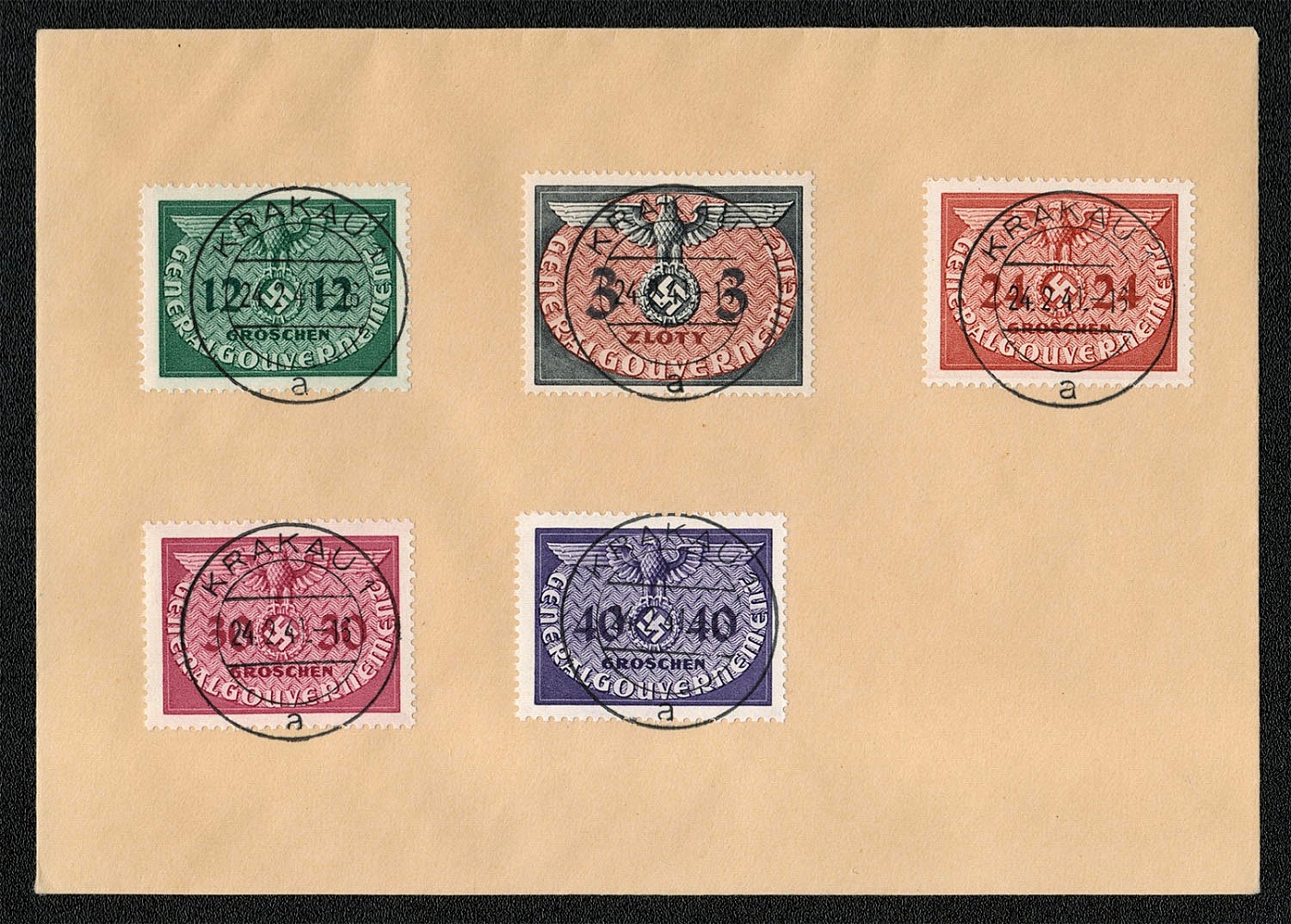
1941 General Government Impromptu souvenir card with the 12, 24, 30, 40 Gr. and 3 Zl
Impromptu souvenir card with the 12, 24, 30, 40 Gr. and 3 Zl. values of the 1 April 1940 Dienstmarken Issue postmarked Krakau 24 February 1941. This set of stamps was designed by W. Krebb and engraved by F. Lorber. They were printed by the photogravure and typographical method on a white, medium weight, unwatermarked paper with a yellow-tinged gum ribbed horizontally or plain. This printing method required a more complicated process. first the stamps were printed without denominations, then they were processed a second time to print the face values. Consequently, some of the stamps are drastically shifted.
Sold for:
$5
714
$5
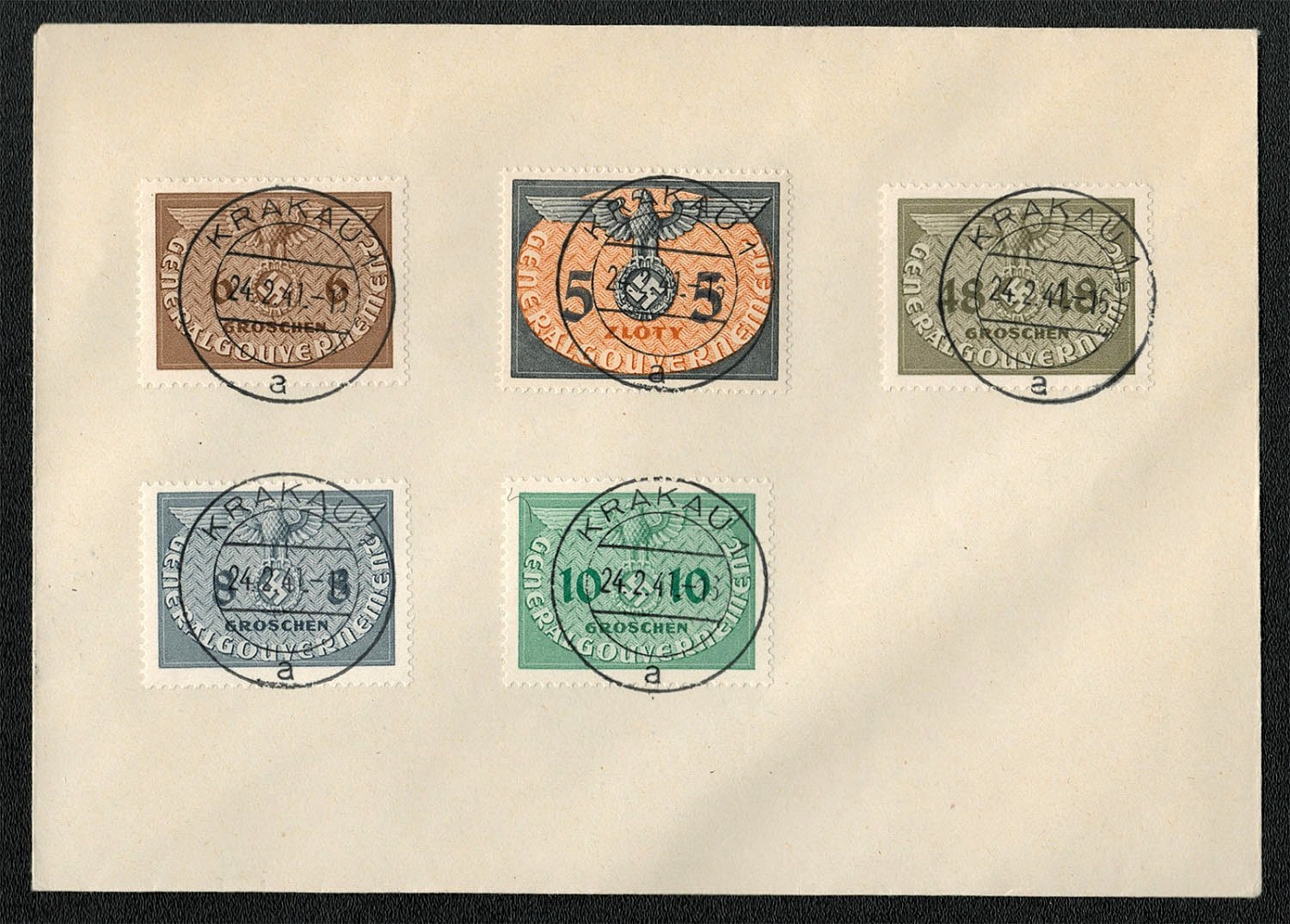
1941 General Government Impromptu souvenir card with the 6, 8, 10, 48 Gr. and 5 Zl
Impromptu souvenir card with the 6, 8, 10, 48 Gr. and 5 Zl. values of the 1 April 1940 Dienstmarken Issue postmarked Krakau 24 February 1941. The stamps were printed in two different sizes and two types of perforations. The design consists of the NSDAP eagle on a background reminiscent of the Gestapo identification shield. The values are overprinted on the sides of the emblem. A variety of color shades exists.
Sold for:
$5
715
$5
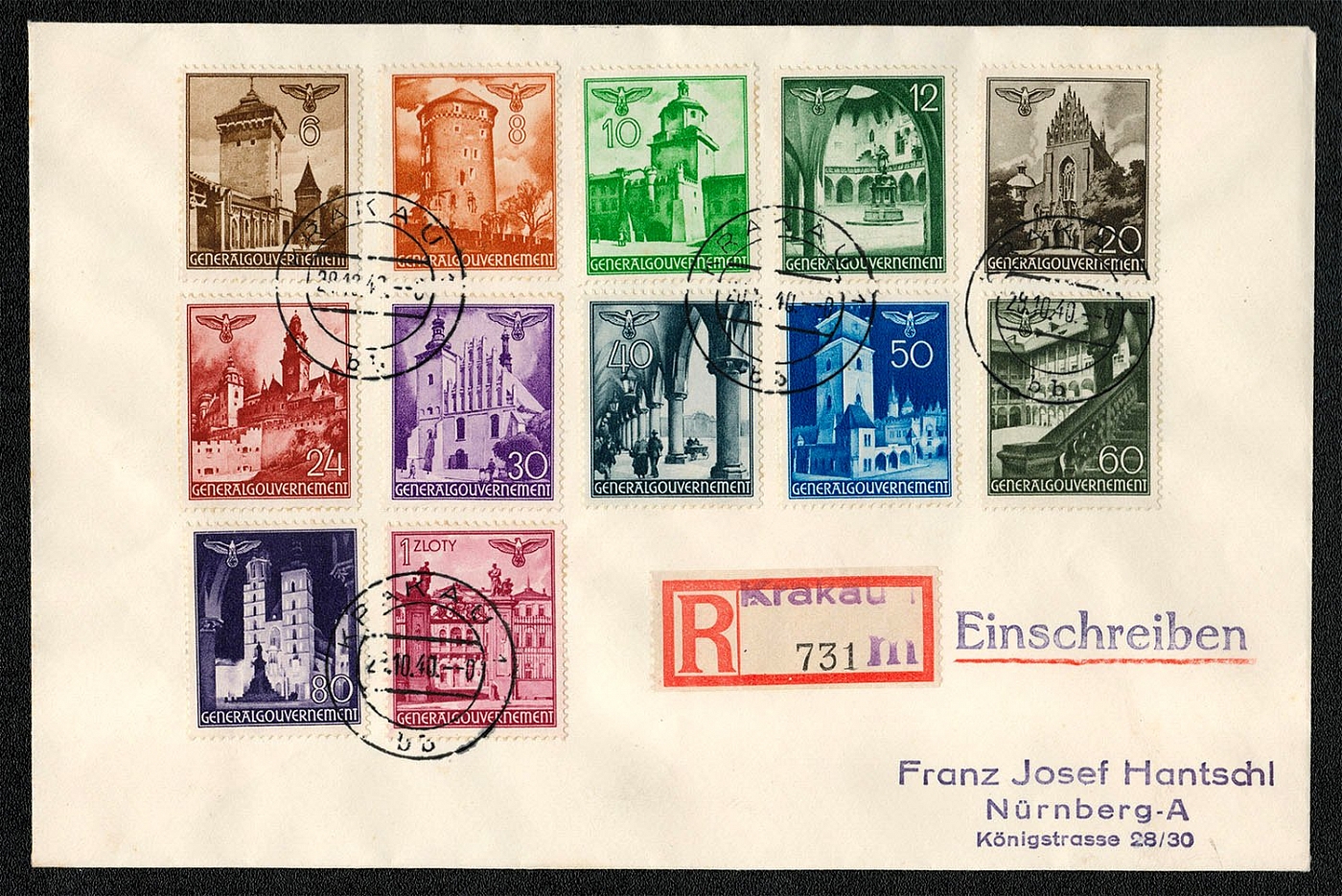
1941 General Government Registered cover franked with Michel 40-51, the Buildings of Krakau, Lublin und Warschau
Philatelically prepared, but postally used cover franked with Michel 40-51, the Buildings of Krakau, Lublin und Warschau, issued 5 September 1940. Mailed from Krakau on 29 October 1940.
Sold for:
$5
716
$30
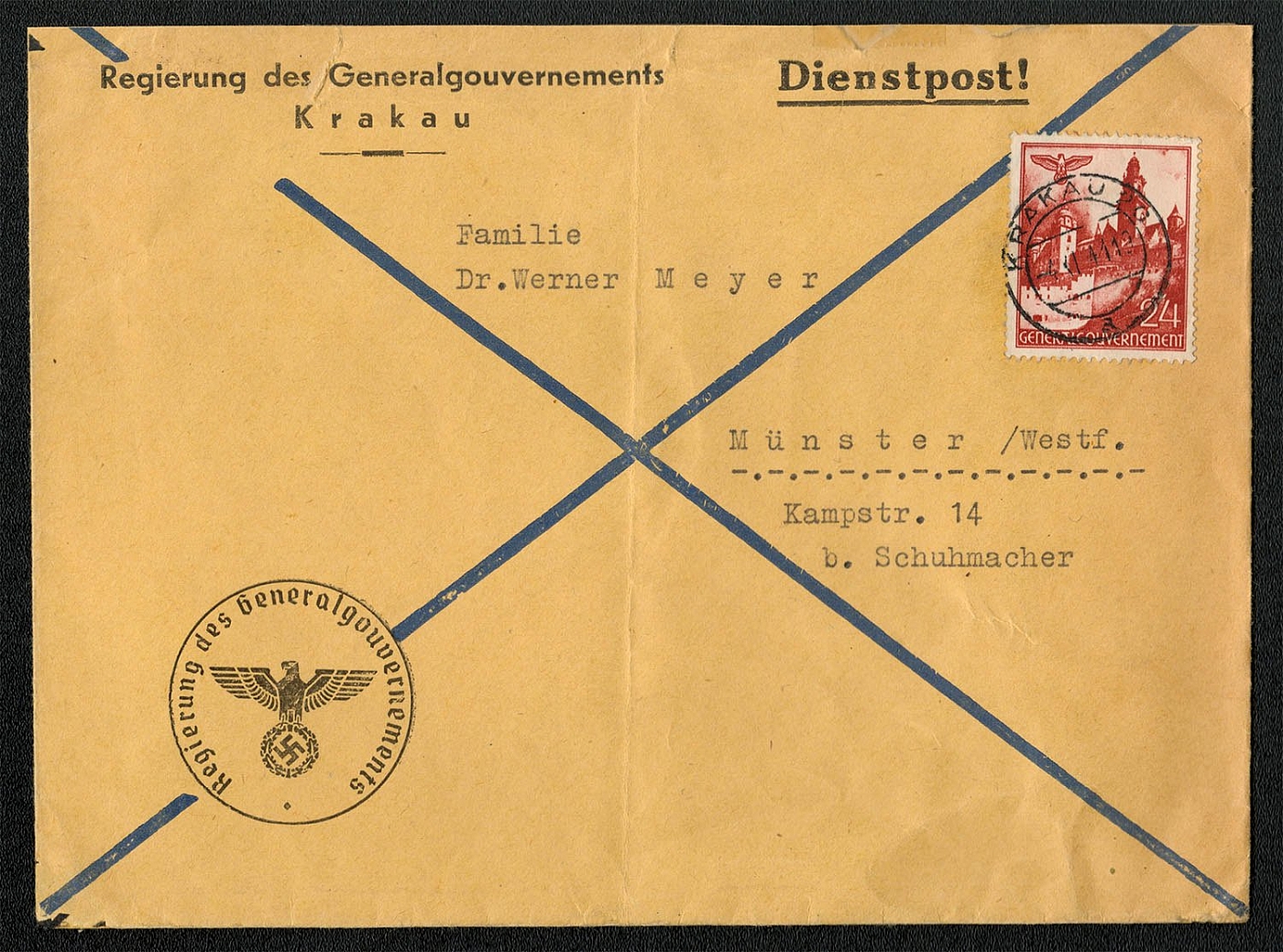
1941 General Government Official Mail franked with Scott N63 and posted in Krakau
Dienstpost, or Official Mail franked with Scott N63 and posted in Krakau on 4 November 1941. Regierung des Generalgouvernements refers to the Government General, the administrative region established in occupied central Poland in 1939.
Sold for:
$30
717
$5
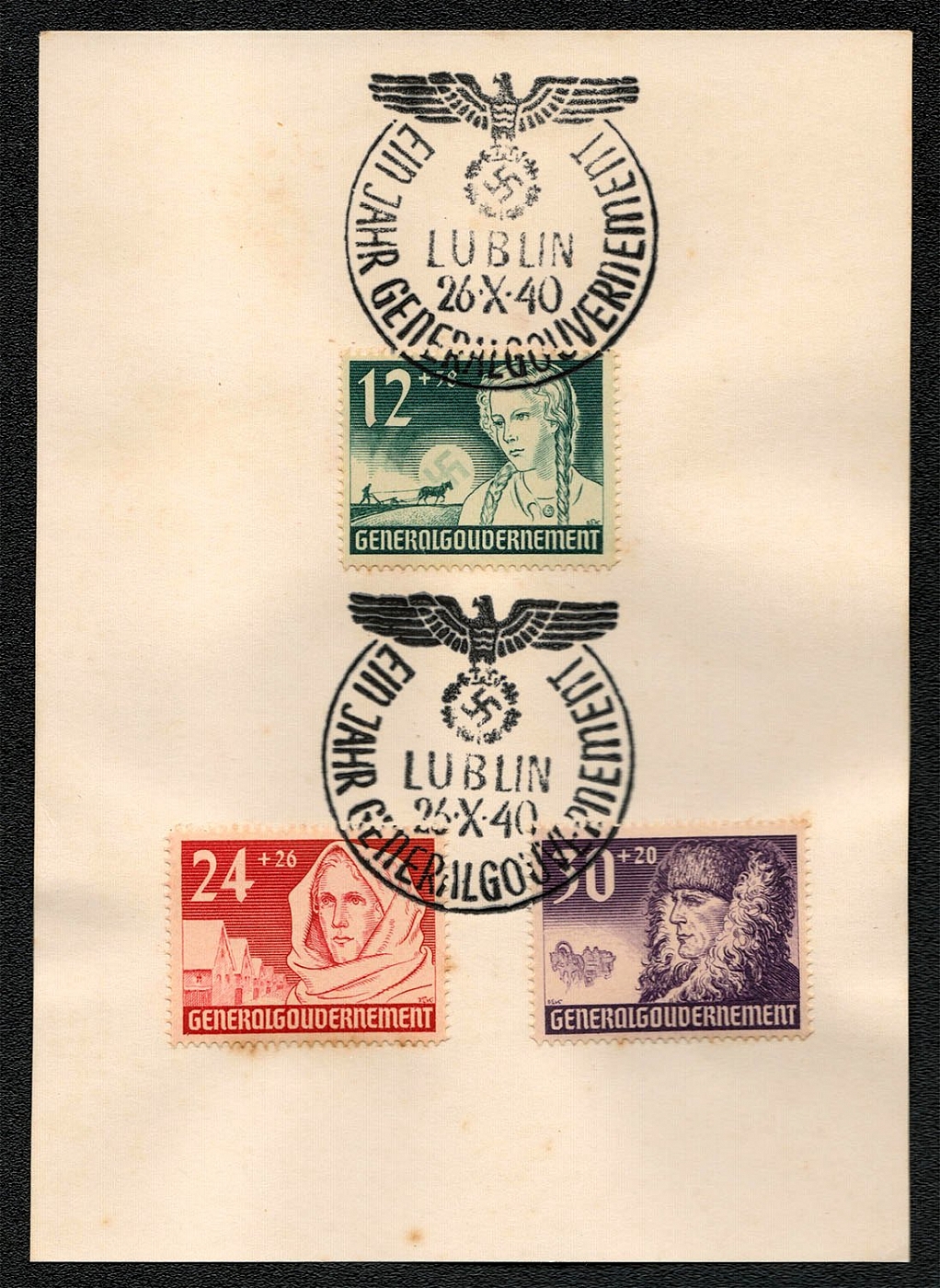
1940 General Government A privately created philatelic souvenir card displaying Sc. B5-7
A privately created philatelic souvenir card displaying Sc. B5-7 Generalgouvernement stamps commemorating “The First Anniversary of the Generalgouvernement. ” Lublin 26 October 1940 The cancellation was only used in Lublin, Krakau, Radom and Warschau for a few days. It is believed that this basic souvenir card was created by the omnipresent philatelic offices of Firma Karl Hennig, Hamburg 39.
Sold for:
$5
718
$5
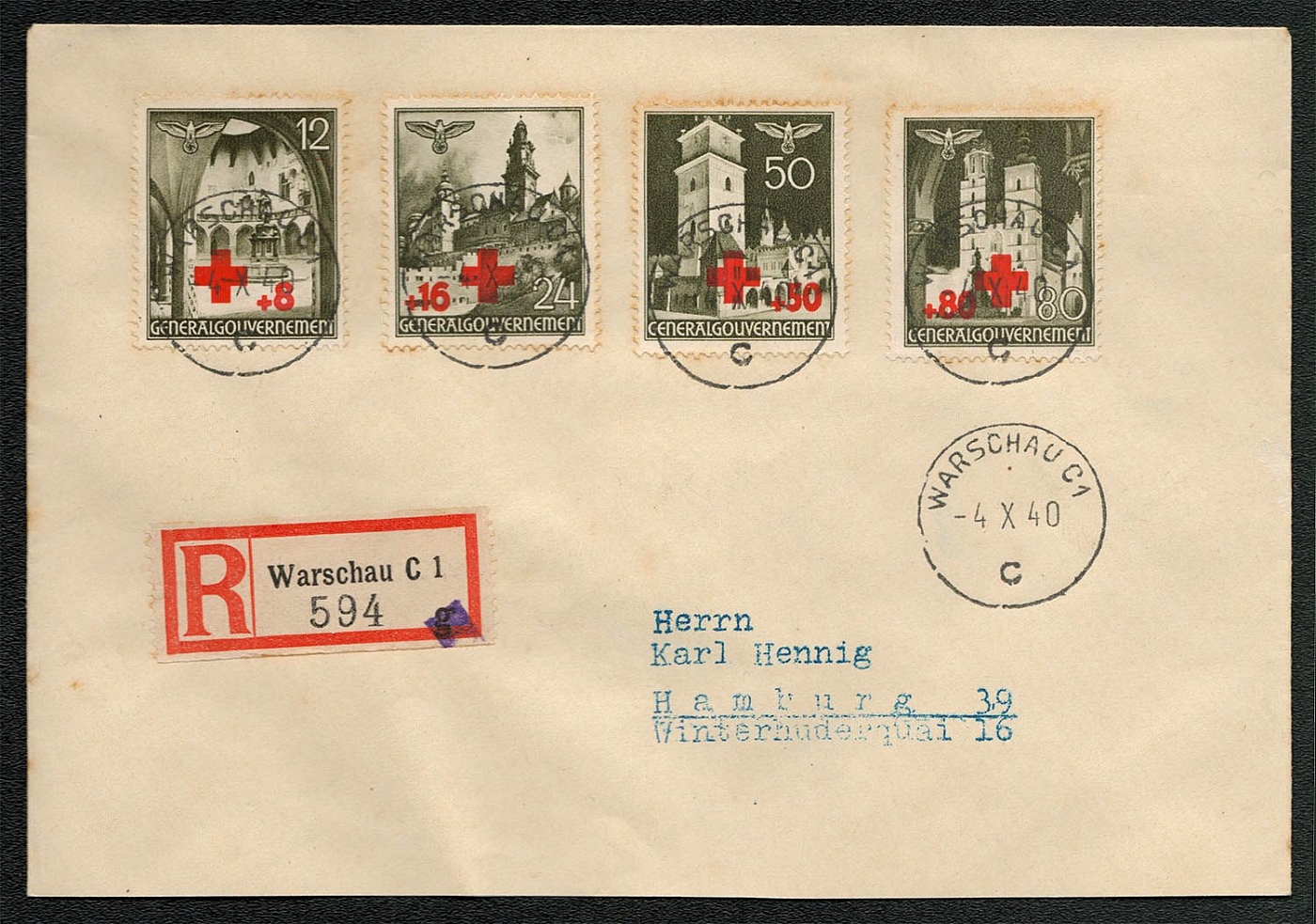
1940 General Government War Charity for the German Red Cross registered and franked with Scott NB1-4
Postally used (but philatelically prepared) cover registered and franked with Scott NB1-4 cancelled in Warschau 4 October 1940. § Each of the five districts within (Krakau, Warschau, Radom, Lublin and Lemberg) had its own postmaster, and in turn, each district was divided into jurisdictional areas: city main team and county main teams
Sold for:
$5
719
$5
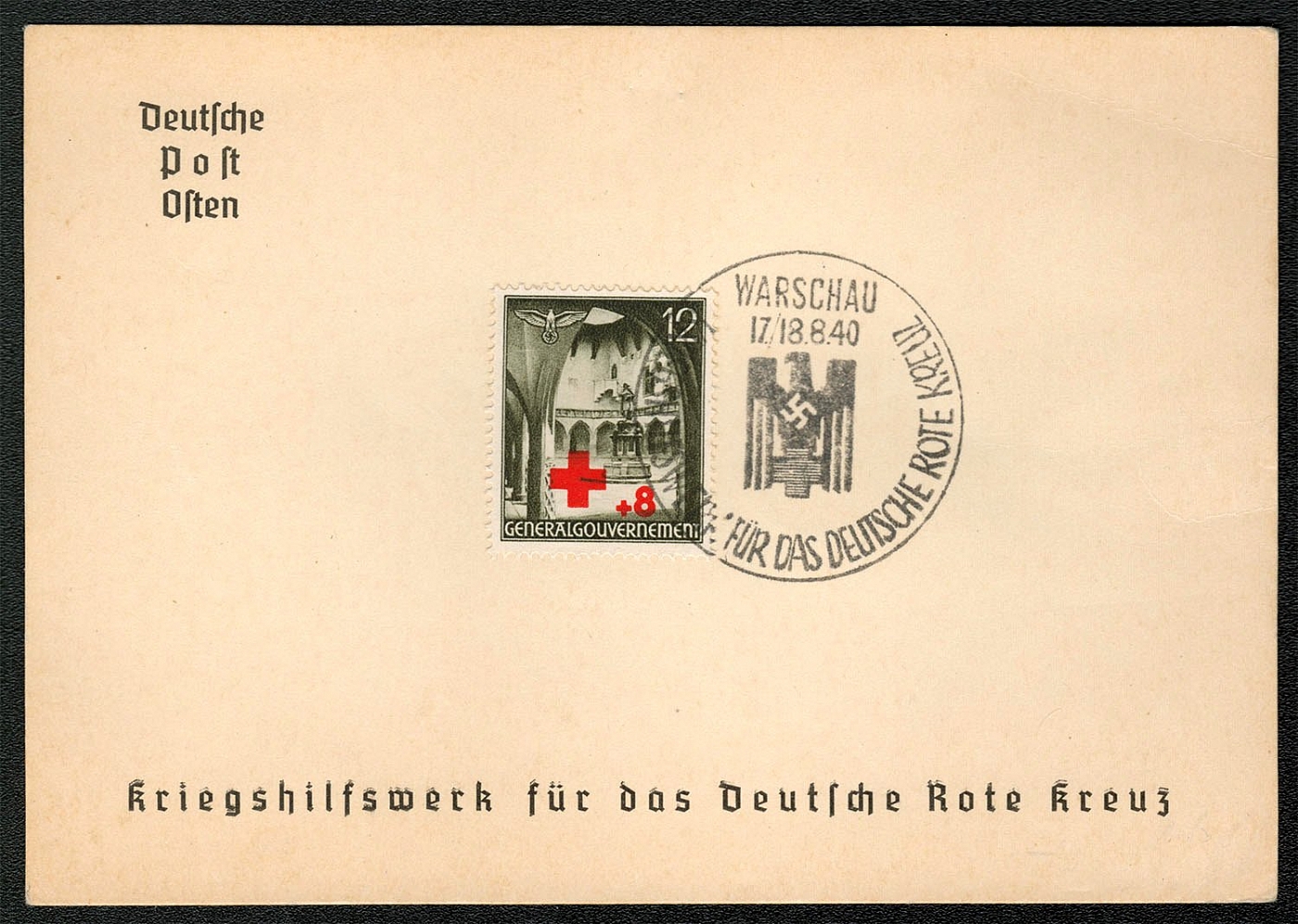
1940 General Government Souvenir card franked with Scott NB1 cancelled in Warschau
Souvenir card franked with Scott NB1 cancelled in Warschau 17/18 August 1940.
Sold for:
$5
720
$10
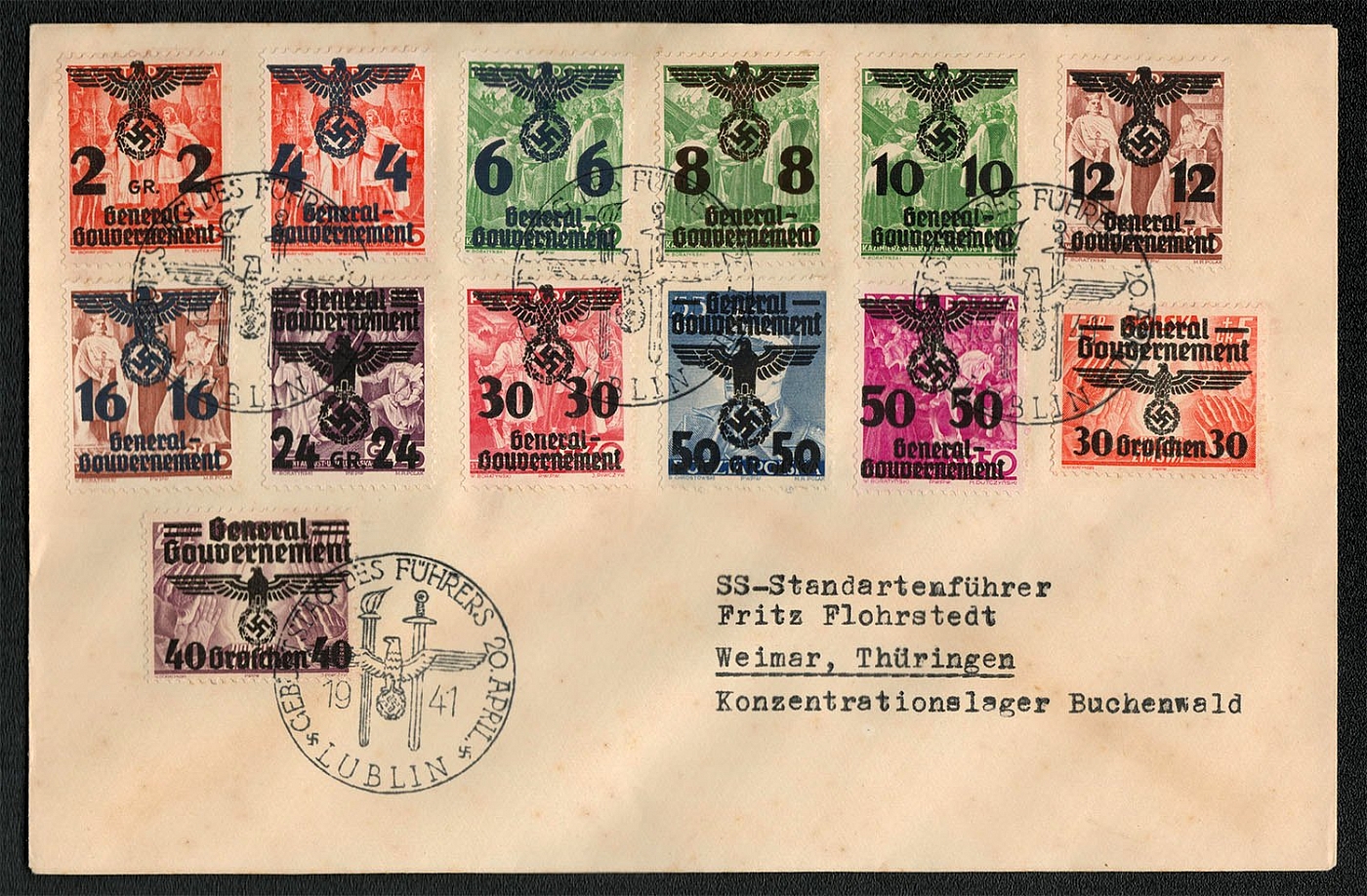
1941 General Government franked with multiple values addressed to an SS colonel at Buchenwald Concentration Camp
"Philatelicaliy prepared cover franked with multiple values of the engraved Polish stamps of 1937 and 1938, which were overprinted by the Generalgouvernement and issued 8-18 March 1940. Postmarked: 20 April 1941 Lublin. Although addressed to an SS colonel at Buchenwald Concentration Camp (SS-Standartenfiihrer Fritz Flohrstedt), it is assumed that rather than going through the mails, the cover was franked and cancelled as a souvenir sheet. The Gelegenheitsstempel (special cancel) was issued to commemorate Hitler’s 52'""1 birthday and depicts the NSDAP eagle emblem with a flaming torch and a sword in the background. It was also used in Radom, Krakau and Warschau for several days."
Sold for:
$10
721
$20
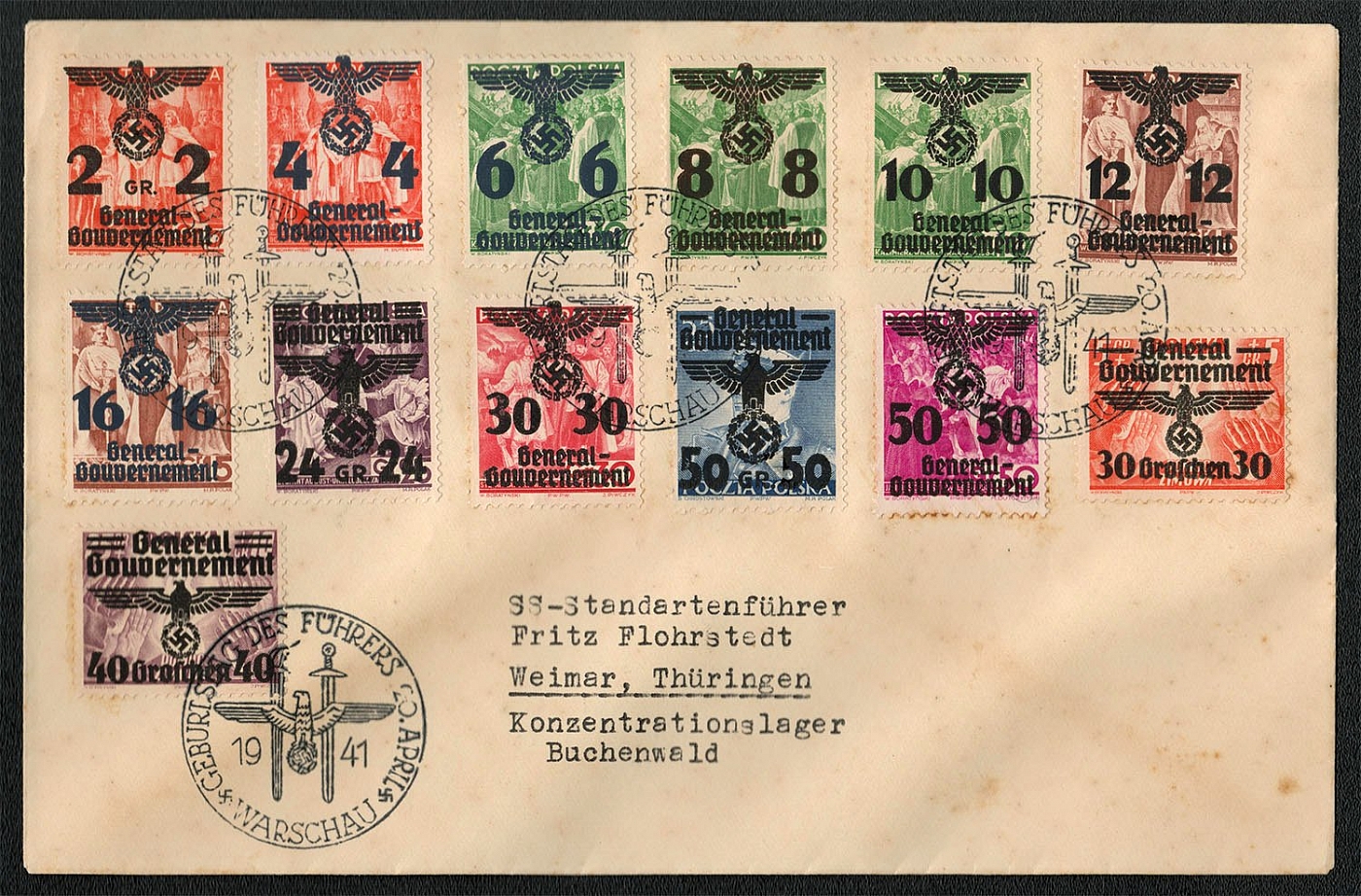
1941 General Government franked with multiple values addressed to an SS colonel at Buchenwald Concentration Camp (2)
"Philatelically prepared cover franked with multiple values of the engraved Polish stamps of 1937 and 1938, which were overprinted by the Generalgouvernement and issued 8-18 March 1940. Postmarked: 20 April 1941 Warschau. Although addressed to an SS colonel at Buchenwald Concentration Camp (SS-Standartenfiihrer Fritz Flohrstedt), it is assumed that rather than going through the mails, the cover was franked and cancelled as a souvenir sheet. The Gelegenheitsstempel (special cancel) was issued to commemorate Hitler’s 52'""1 birthday and depicts the NSDAP eagle emblem with a flaming torch and a sword in the background. It was also used in Radom, Krakau and Lublin for several days."
Sold for:
$20
722
$12
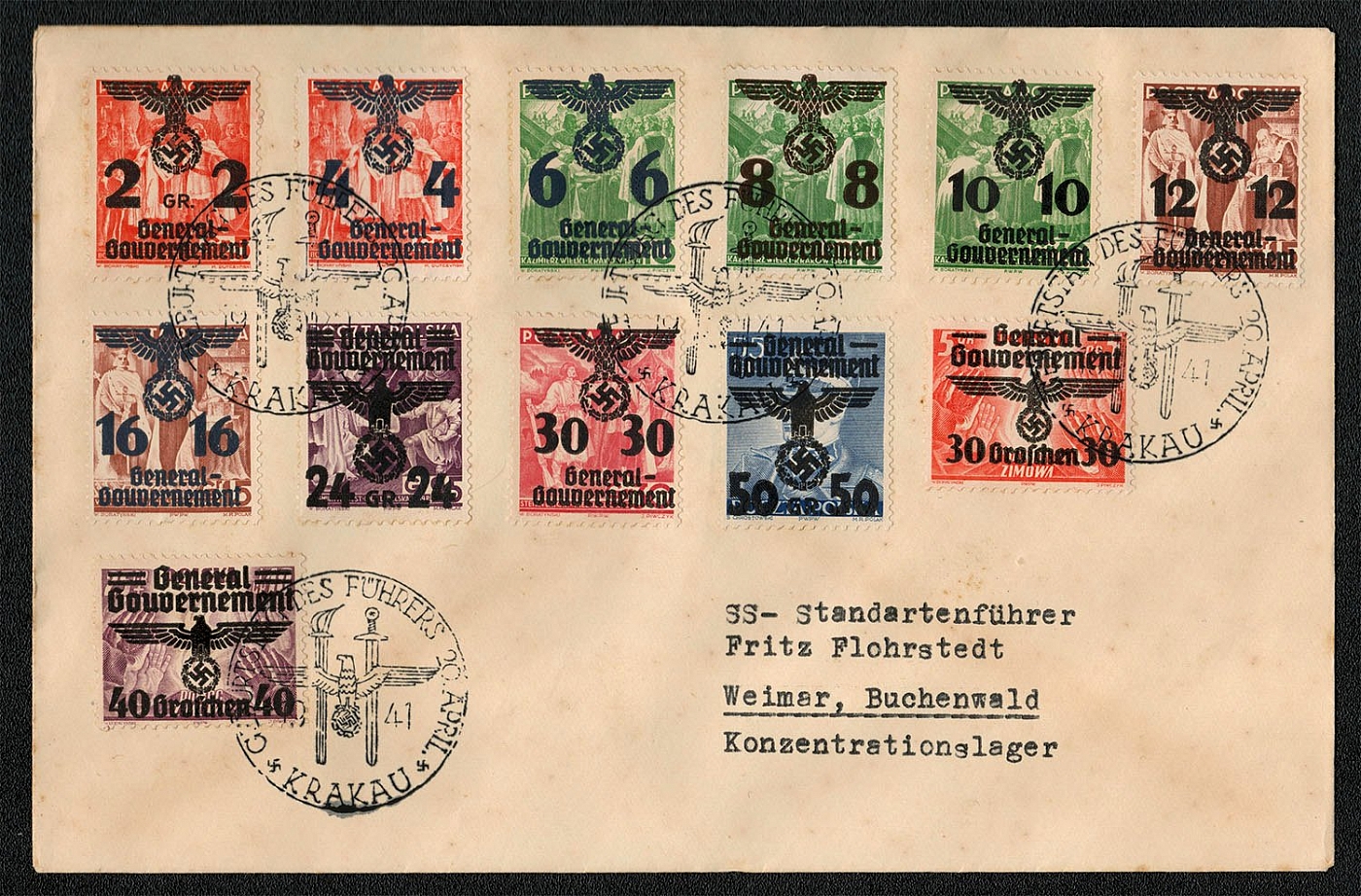
1941 General Government franked with multiple values addressed to an SS colonel at Buchenwald Concentration Camp (3)
Philatelically prepared cover franked with multiple values of the engraved Polish stamps of 1937 and 1938, which were overprinted by the Generalgouvernement and issued 8-18 March 1940. Postmarked: 20 April 1941 Krakau. Although addressed to an SS colonel at Buchenwald Concentration Camp (SS-Standartenfiihrer Fritz Flohrstedt), it is assumed that rather than going through the mails, the cover was franked and cancelled as a souvenir sheet. The Gelegenheitsstempel (special cancel) was issued to commemorate Hitler’s 52nd birthday and depicts the NSDAP eagle emblem with a flaming torch and a sword in the background. It was also used in Warschau, Radom and Lublin for several days.
Sold for:
$12
723
$10
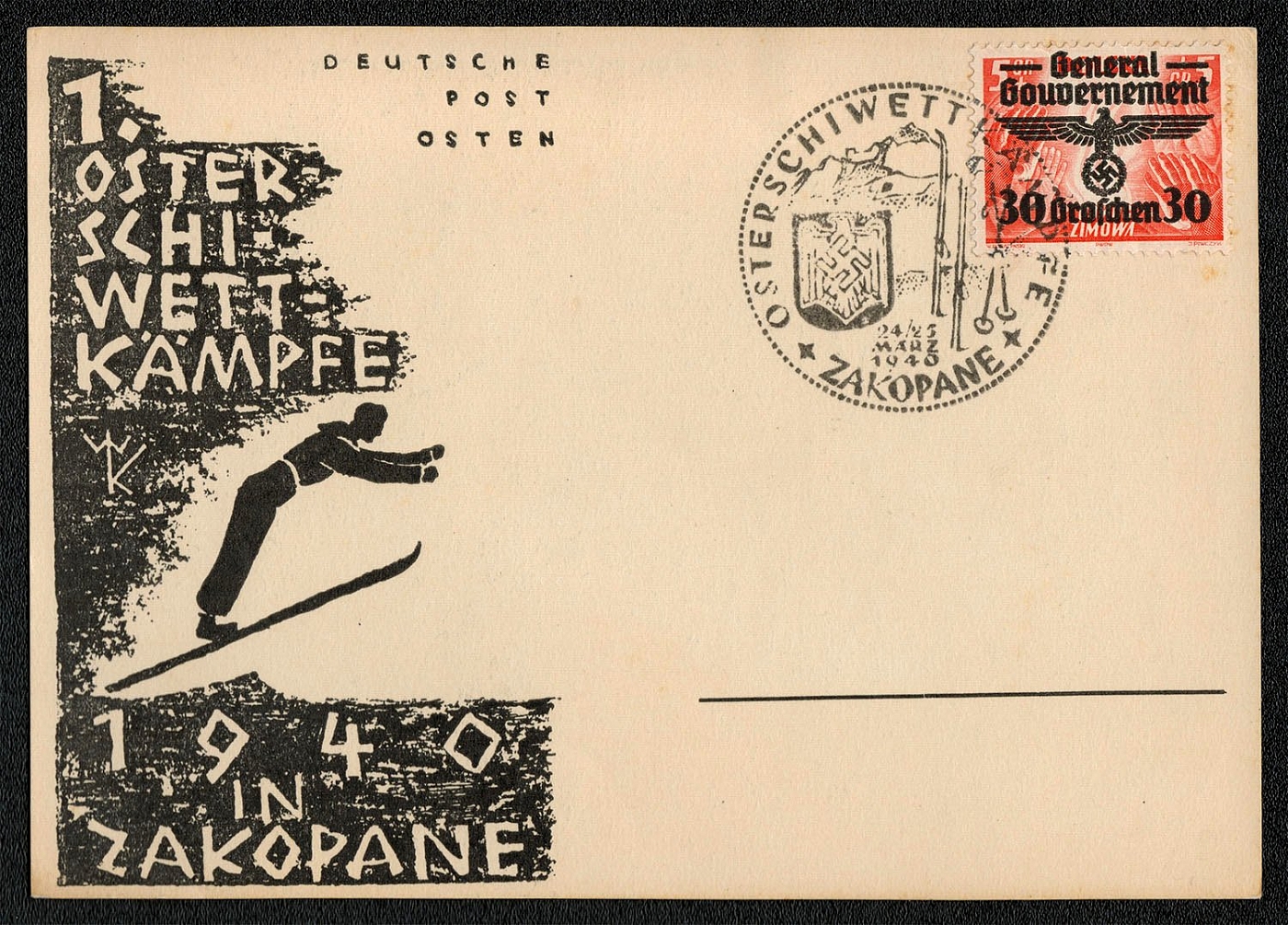
1941 General Government “Eastern Ski Championships” in Zakopane Philatelically prepared card franked with Scott N48
"Philatelically prepared card franked with Scott N48. The Gefalligkeitsstempel (favor cancellation) commemorates the 1940 “Eastern Ski Championships” in Zakopane. Postmarked: 24/25 March 1940 Zakopane The cancel depicts Mt. Kasprzowy Wierch, a pair of skies and the NSDAP sports symbol. It was used in Zakopane only on these two days. Zakopane is a commune founded in the 16""1 century in the Tatra Mountains of southern Poland. At an altitude of about 3300 feet, it remains a major summer resort and winter sports center."
Sold for:
$10
724
$5
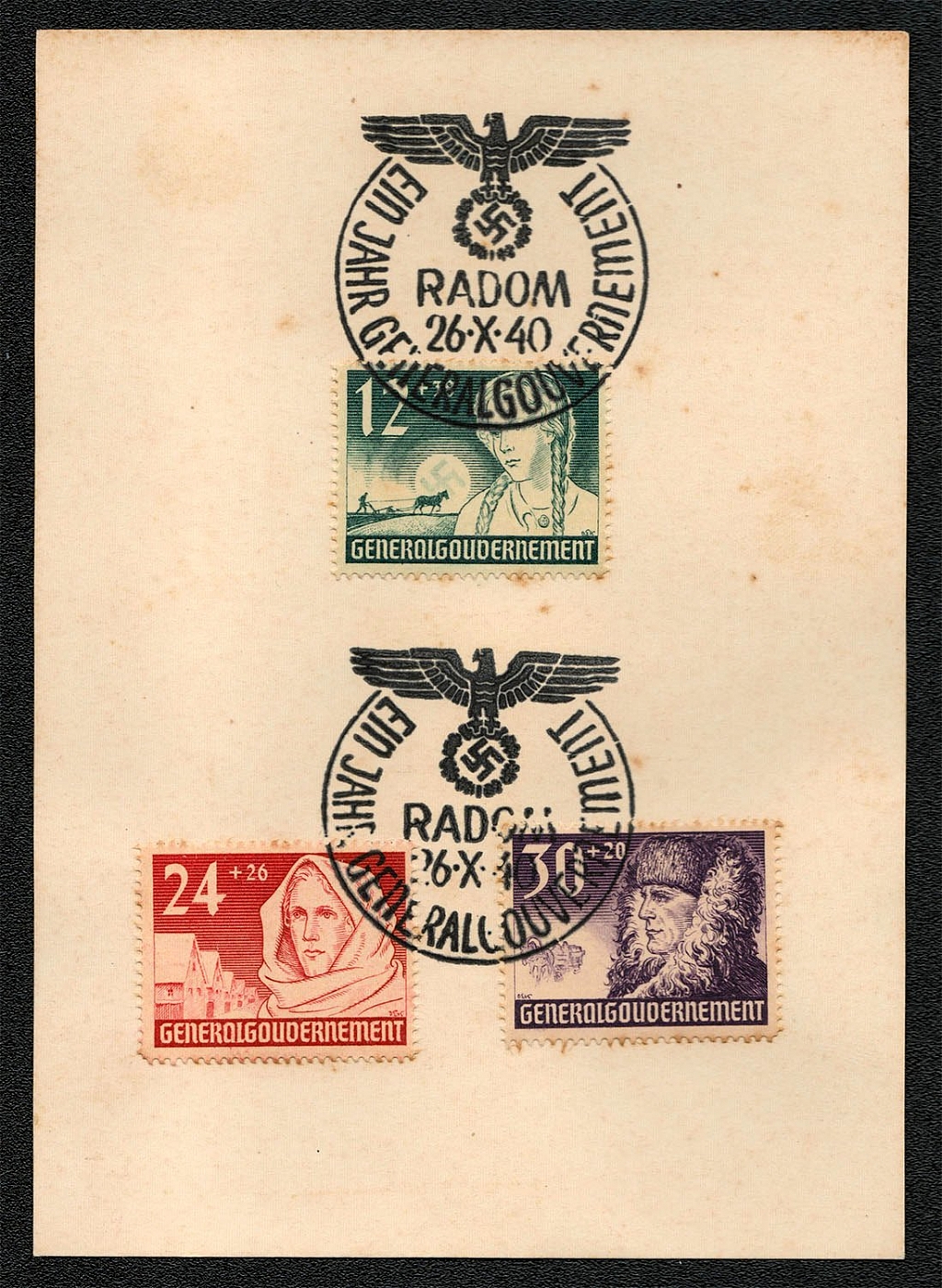
1940 General government A privately created philatelic souvenir card displaying Sc. B5-7
A privately created philatelic souvenir card displaying Sc. B5-7 Generalgouvernement stamps commemorating “The First Anniversary of the Generalgouvernement. ” Radom 26 October 1940 The cancellation was only used in Radom, Lublin, Krakau, and Warschau for a few days. It is believed that this basic souvenir card was created by the omnipresent philatelic offices of Firma Karl Hennig, Hamburg 39.
Sold for:
$5
725
-
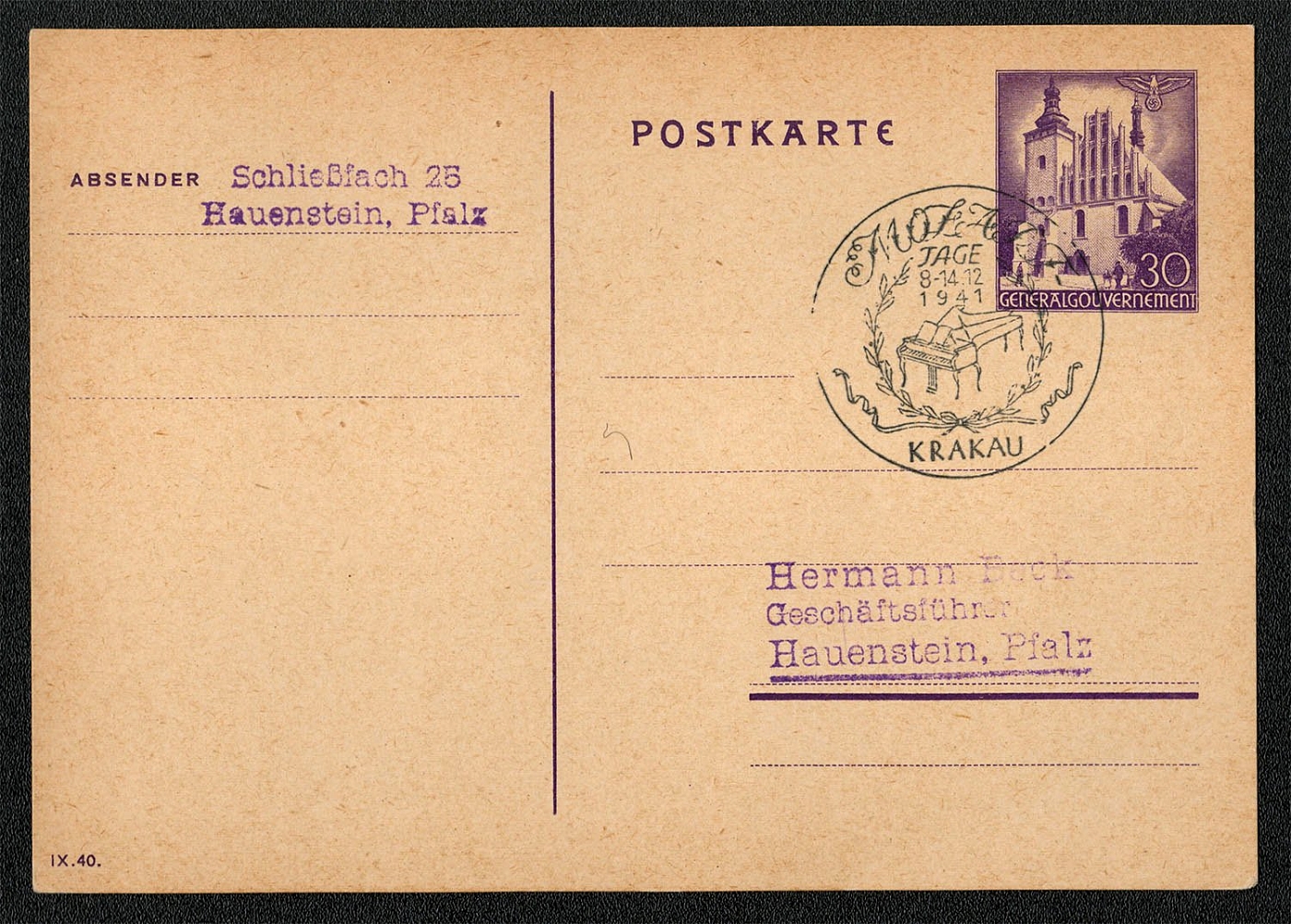
1942 General government Michel P 9 celebrates “Mozart Day” in Krakau
Michel P 9 Issued October 1940. valid until the termination of German occupation. The Gefalligkeitsstempel (favor cancellation) celebrates “Mozart Day” in Krakau during the Mozart Festival, 8-14 December 1941. It depicts Mozart’s pianoforte encircled by a wreath with a ribbon. It was only used in Krakau. The imprinted stamp is from the first Cultural and Historical Architectures issue of 1940. It depicts the Church Po-Wizytkowski. “IX.40.” in the lower left corner of the card is the date of printing. It is believed these cards were printed by the State Printing Works in Wien.
Unsold
726
-
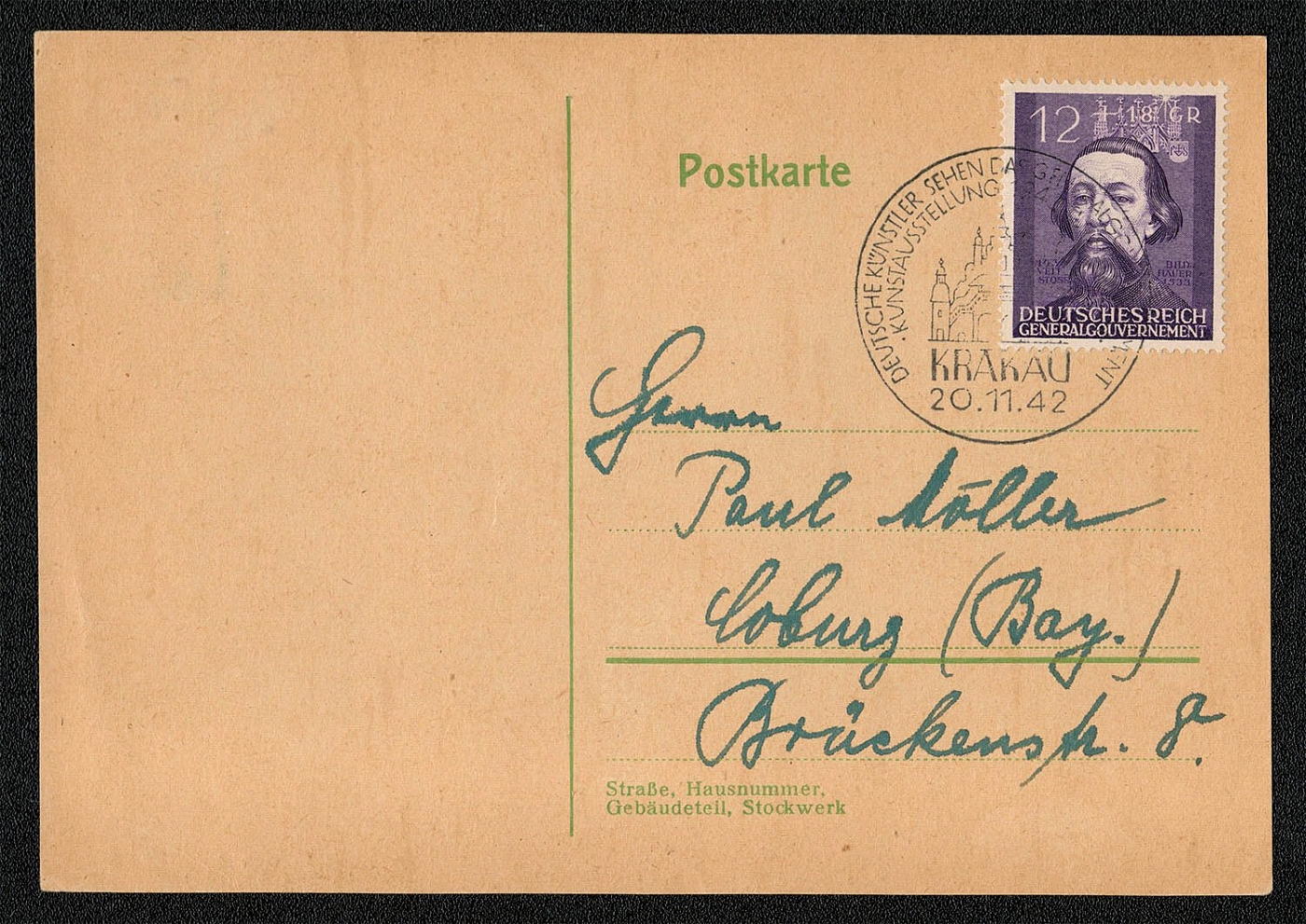
1942 General government Scott No. NB 19 pictures Veit Stoss, and was cancelled in Krakau on the First Day of Issue
Scott No. NB 19 pictures Veit Stoss, and was cancelled in Krakau on the First Day of Issue of the semi-postal set commemorating famous German artists. Krakau, 20 November 1942 “See the German Artists of the Generalgouvernement 1942 Art Exhibition” Veit Stoss (Polish Wit Stosz, or Stwosz) was born either in 1438 or 1447 in Swabia, Germany and died in 1533 in Niirnberg. He is considered to be one of the greatest sculptors and woodcarvers of 16,h century Germany. His nervous, angular forms, realistic detail, and virtuoso wood carving synthesized the sculptural styles of Flemish and Danubian art and, together with the emotional force and dramatic realism of the Dutch sculptor Nicolaus Gerhaert von Leyden, exercised tremendous influence of the late Gothic sculpture of Germany, especially that of Niirnberg.
Unsold
727
-
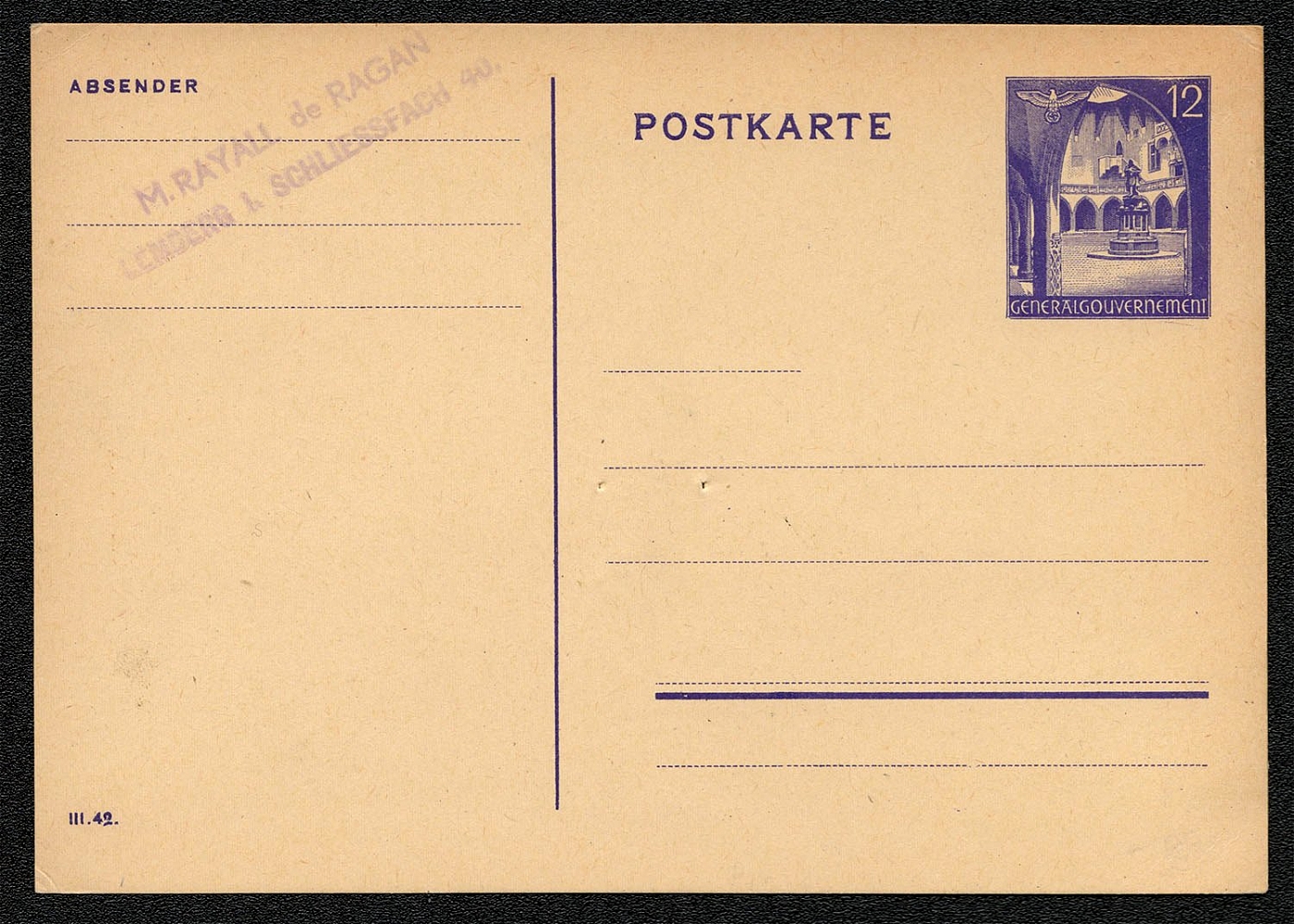
1942 General government Michel P 12/02 Issued March 1942
Michel P 12/02 Issued March 1942. invalidated with the termination of German occupation. Printed by the State Printing Works, Wien. There were three printings of this postal card: February 1941, March 1942 and January 1944, which accordingly, is indicated in the lower left corner of the card. This example (III.42.) is, therefore, from the March 1942 printing. The imprinted stamp is that of the first Cultural and Historical Architecture issue of 5 August 1940 (except that it is in violet color). It was designed by Prof. E. Puchinger, one of the more talented designers of Generalgouvernement stamps.
Unsold
728
-
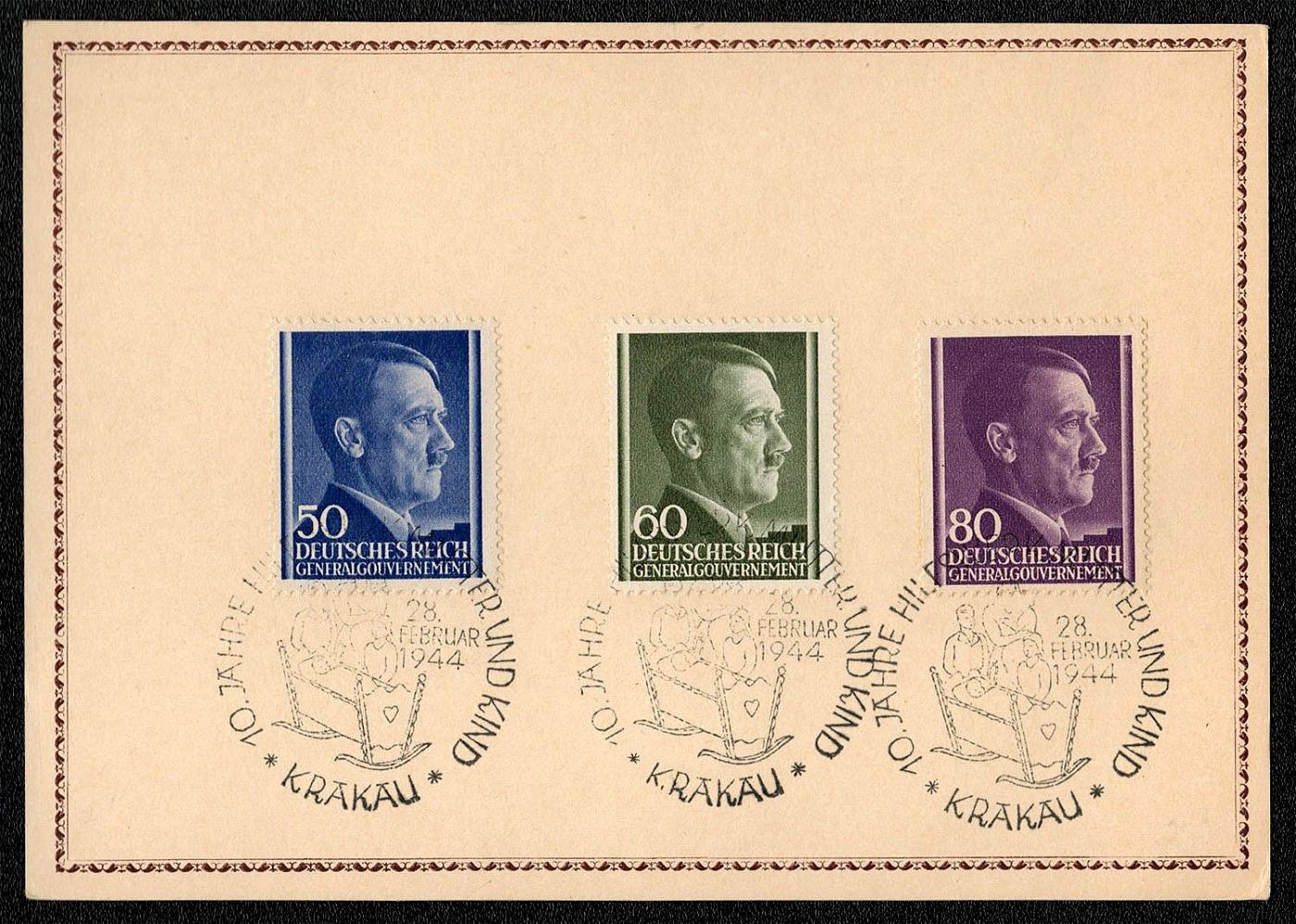
1944 General government Souvenir card franked with Scott Nos. N91-93 posted in Krakau
Souvenir card franked with Scott Nos. N91-93 posted in Krakau, 28 February 1944 with the “Ten Years of Mother and Child Aid Society” Gelegenheitsstempel (special cancel). This aid society was actually formed to help unmarried mothers. The cancel originated in Germany to foster and encourage childbirths out of wedlock for “pure Nordic race” breeding. Depicted is a woman holding a baby, a boy standing next to her, and a girl standing in front of the woman and a cradle with a baby. The cancel was only used in Krakau.
Unsold
729
-
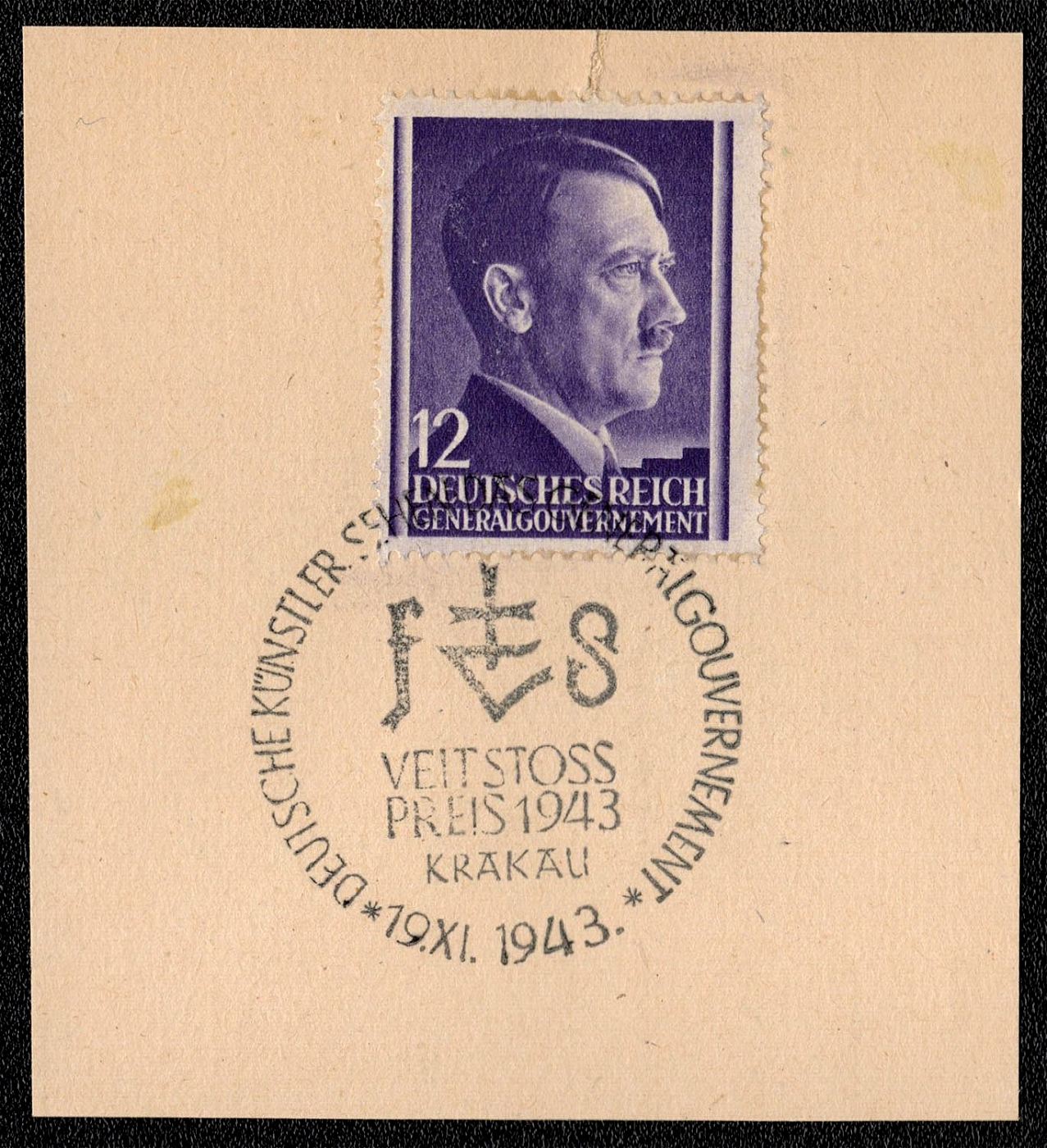
1943 General government Scott N80 with Veit Stoss Preis commemorative cancellation. Krakau
Scott N80 with Veit Stoss Preis commemorative cancellation. Krakau, 19 November 1943 This cancellation commemorates an art show in Krakau with the slogan German Artists See The Generalgouvernement. This time the Veit Stoss Prize was given to the best exhibit. Although Veit Stoss was born in Nurnberg, he changed his name to Wit Stwosz after he renounced his German citizenship. He adopted Poland as his motherland and took Polish citizenship in 1477 in Krakau. The cancel bears Stoss’ facsimile of his signature which he used on the objet d’art he created, mostly sculptures. The cancellation was used only in Krakau.
Unsold
730
$5
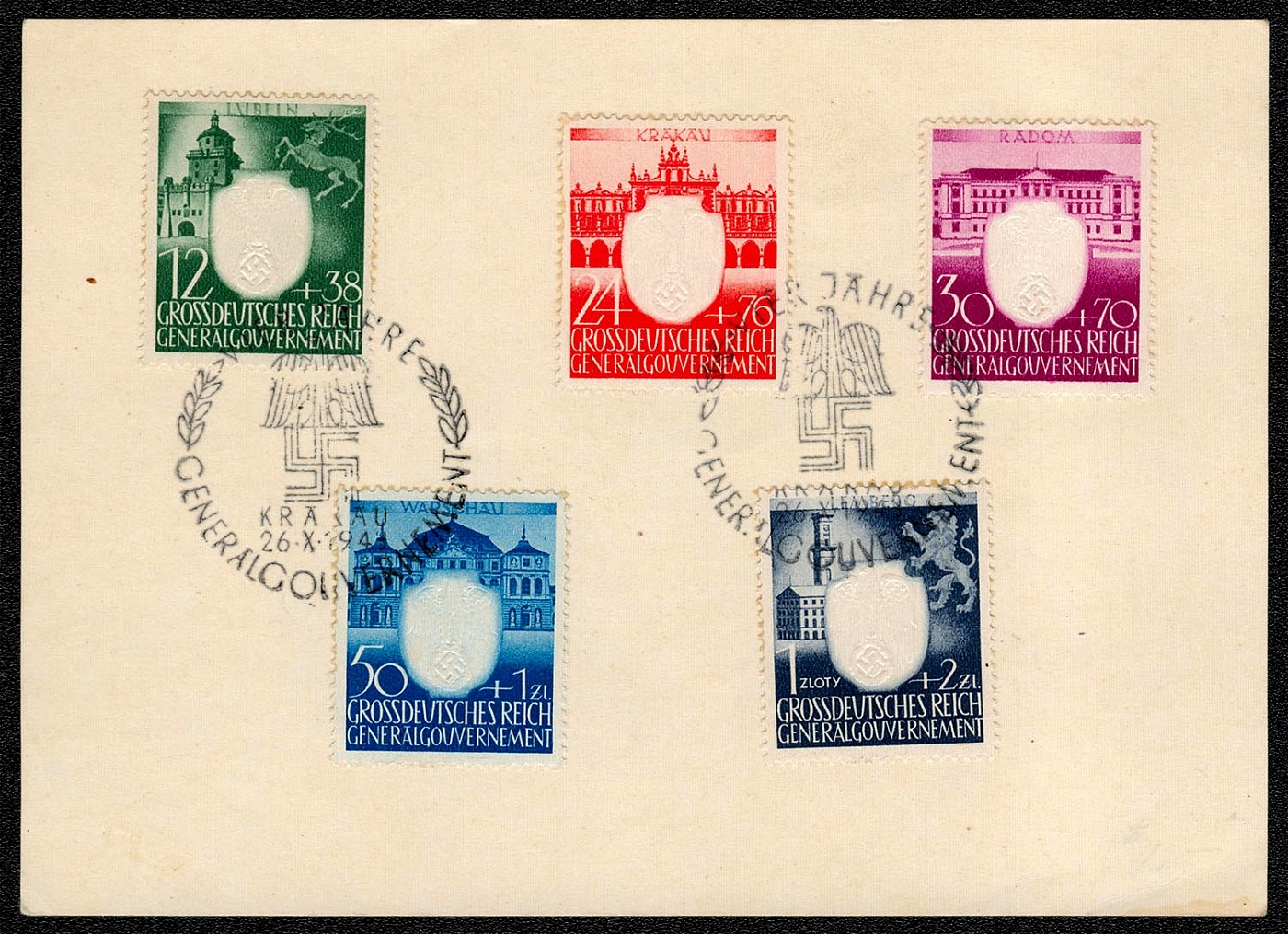
1943 General government Souvenir card franked with Scott Nos. NB 28-32, postmarked Krakau
Souvenir card franked with Scott Nos. NB 28-32, postmarked Krakau, 26 October 1943 with the Gelegenheitsstempel (special cancel) commemorating the Third Anniversary of the Generalgouvernement.
Sold for:
$5
731
-
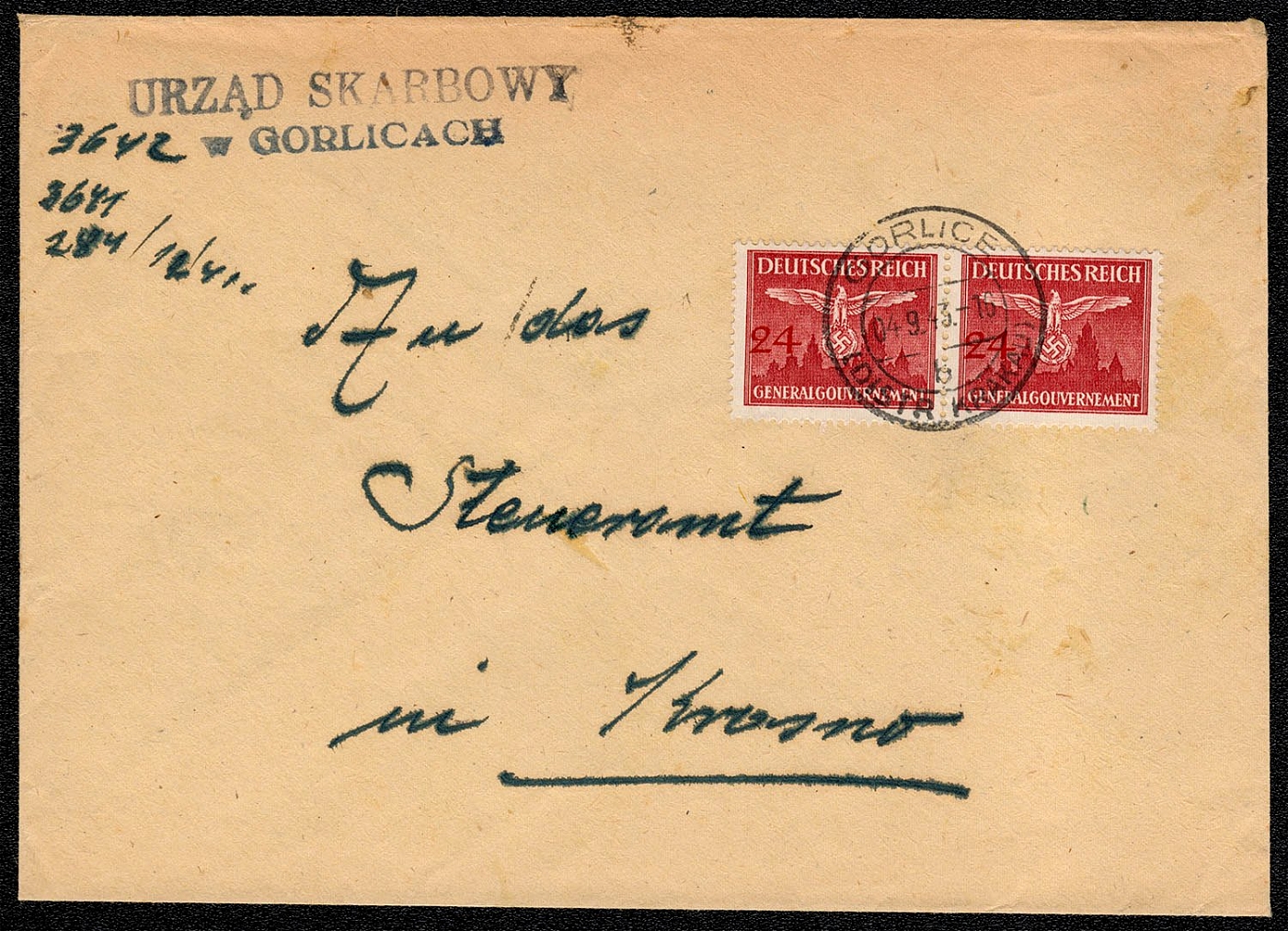
1943 General government cover franked with the third issue official stamps (Sc. N031). Mailed from Gorlice
Postally used cover franked with the third issue official stamps (Sc. N031). Mailed from Gorlice on 4 September 1943. Gorlice is a commune approximately 58 miles east, southeast of Krakau. It remains the center of Poland’s petroleum industry.
Unsold
732
$5
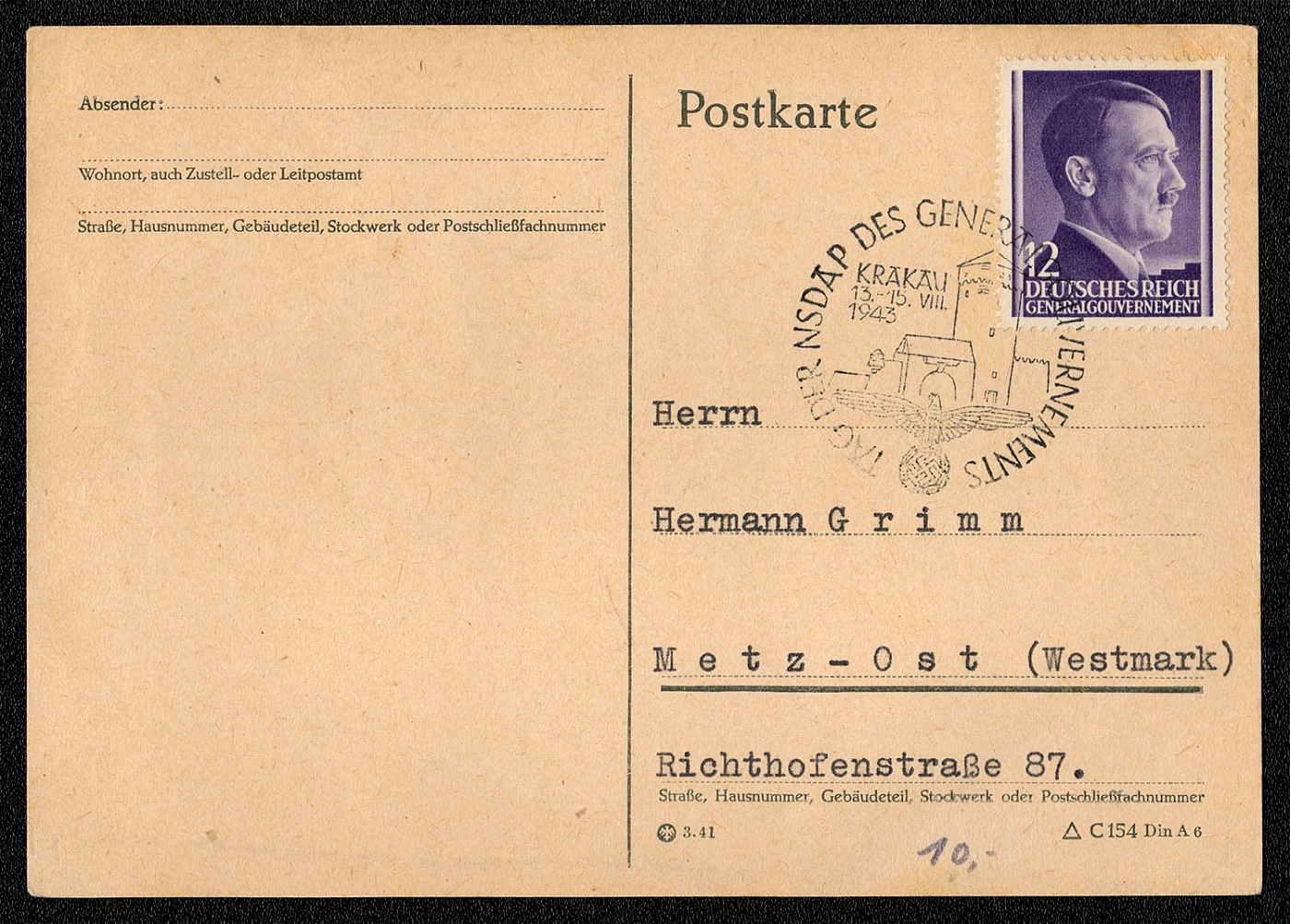
1943 General government Souvenir postcard franked with Scott No. N80, postmarked Krakau
Souvenir postcard franked with Scott No. N80, postmarked Krakau, 13-15 August 1943 with the Gelegenheitsstempel (special cancel) commemorating the Day of the Generalgouverneinent.
Sold for:
$5
733
-

1943 General government Piece franked with tab singles of Scott No. N100 and 101, postmarked Krakau
Piece franked with tab singles of Scott No. N100 and 101, postmarked Krakau, 7 August 1943.
Unsold
734
-
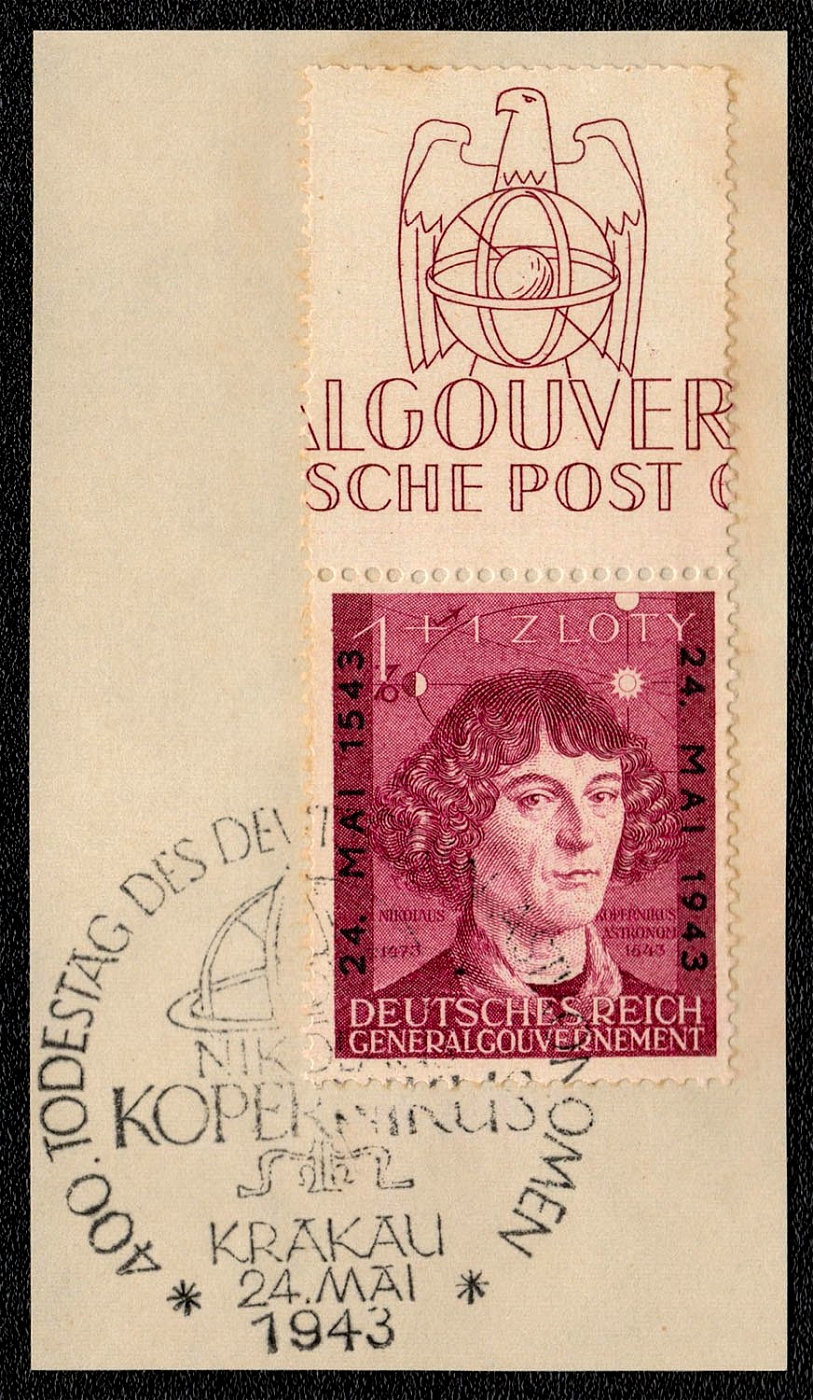
"1943 General government Scott No. NB27 issued 24 May 1943, mint and on cut square with First Day of Issue cancellation commemorating the 400""’ anniversary of the death of Nikolaus Kopernikus"
"Scott No. NB27 issued 24 May 1943, mint and on cut square with First Day of Issue cancellation commemorating the 400""’ anniversary of the death of Nikolaus Kopernikus, the German astronomer."
Unsold
735
-
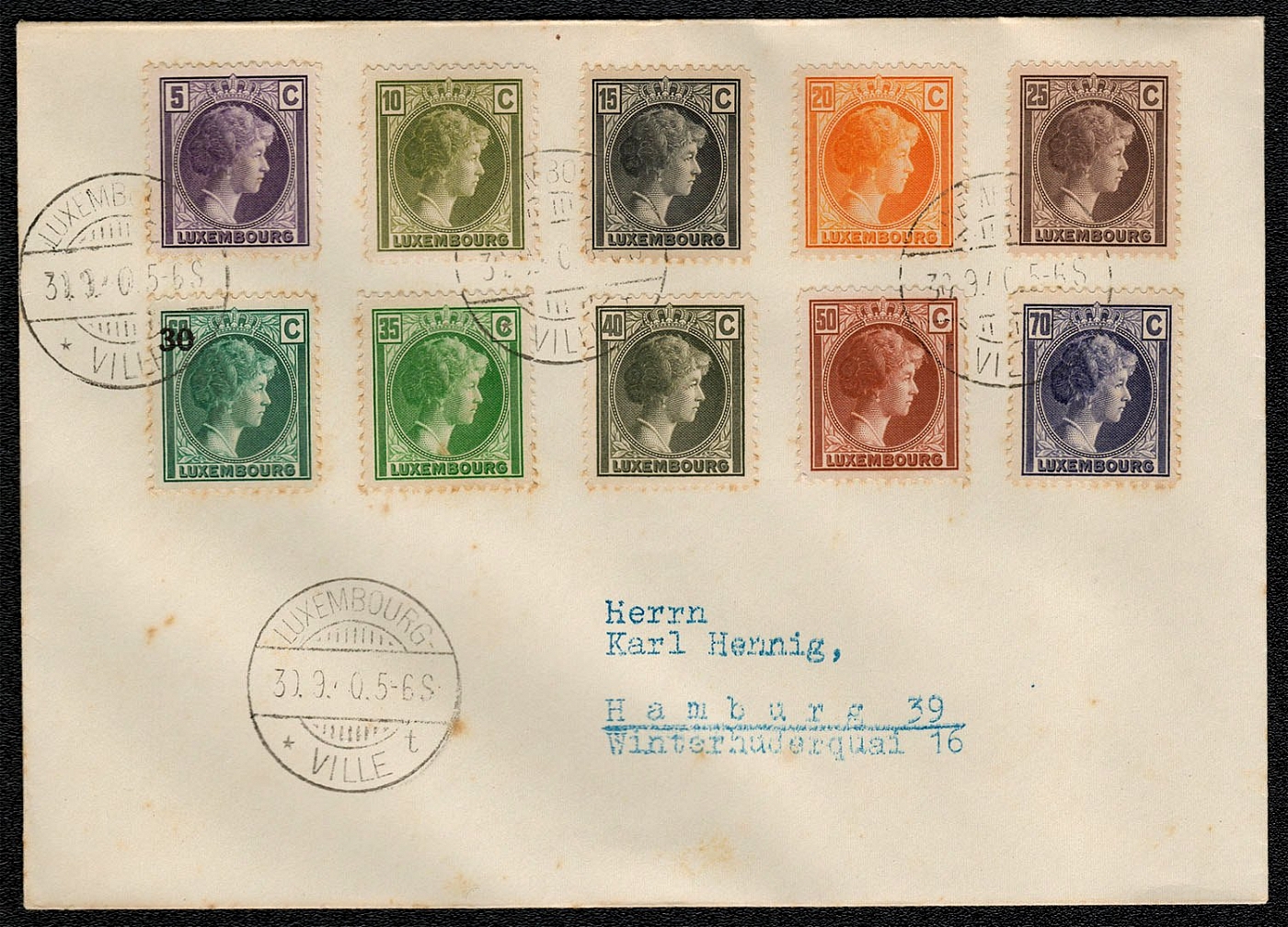
1940 German Occupation Luxembourg Official Cover last day of validity for the stamps of Luxembourg during the German Occupation
German Dienstpost cover with Scott Nos. 159-162, 164, 168-170, 173, and 188 cancelled in Luxembourg-Ville on 30 September 1940, the last day of validity for the stamps of Luxembourg during the German Occupation. Luxembourg, officially the Grand Duchy of Luxembourg (Grossherzogtum Luxemburg), is one of the smallest nations in Europe. It is situated in the northwestern sector of the continent, and covers an area of 998 square miles. Its eastern boundary with Germany is formed by the Our, Sure, and Moselle rivers. Its maximum length (north to south) is 51 miles, and its maximum width (east to west) is 35 miles. The population in 1940 was 296,913. The above cover was mailed in the capital city (1940 population, 57,740). * Luxembourg is divided into two distinct physiographic regions: the Osling which occupies the northern one-third of the country. and the Gutland (Good Land) which makes up the southern two-thirds. The Osling is an eastward extension of the densely forested Ardennes Mountains (average elevation 1,500 feet), whi
Unsold
736
-
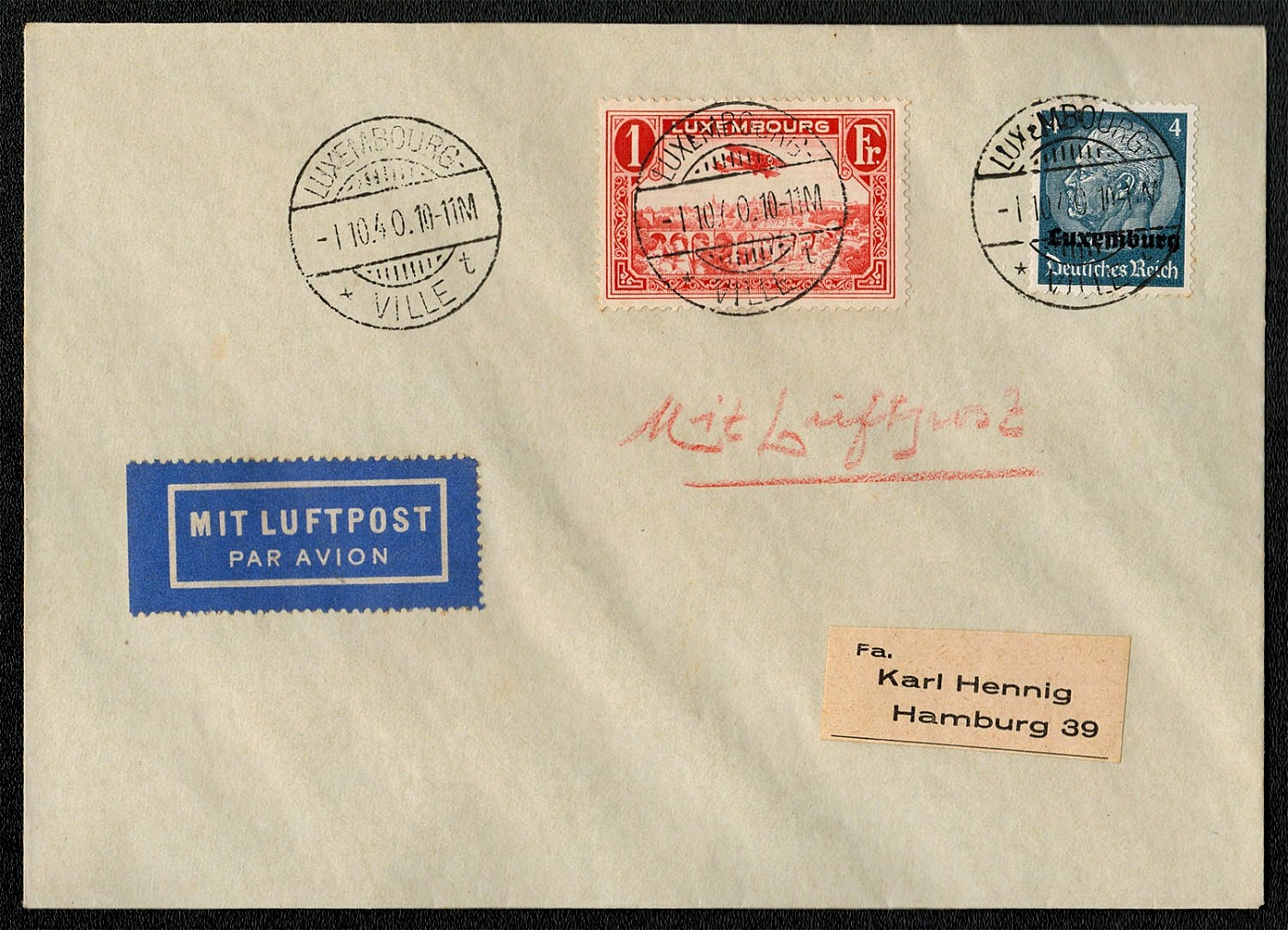
1940 German Occupation Luxembourg Official Cover with Scott Nos. C3 and N2 the first day of validity for the German issued stamps of occupied Luxembourg
German Dienstpost cover with Scott Nos. C3 and N2 cancelled in Luxembourg on 1 October 1940, the first day of validity for the German issued stamps of occupied Luxembourg. The stamps of Luxembourg remained valid for postage until 2 October 1940. Officially permitted mixed-postages of stamps from Luxembourg and Germany, on one cover, were possible on these two days only and are extremely scarce. Just as dawn was breaking on 10 May 1940, Hitler, accompanied by Keitel, Jodi and others of the Oberkommando der Wehrmacht staff, arrived at headquarters which he had named Felsennest, near Muenstereifel. “Twenty-five miles to the west German forces were hurtling over the Belgian frontier. Along a front of 175 miles, from the North Sea to the Maginot Line, Nazi troops broke across the borders of three small neutral states, Holland. Belgium and Luxembourg, in brutal violation of the German word, solemnly and repeated given.”
Unsold
737
-
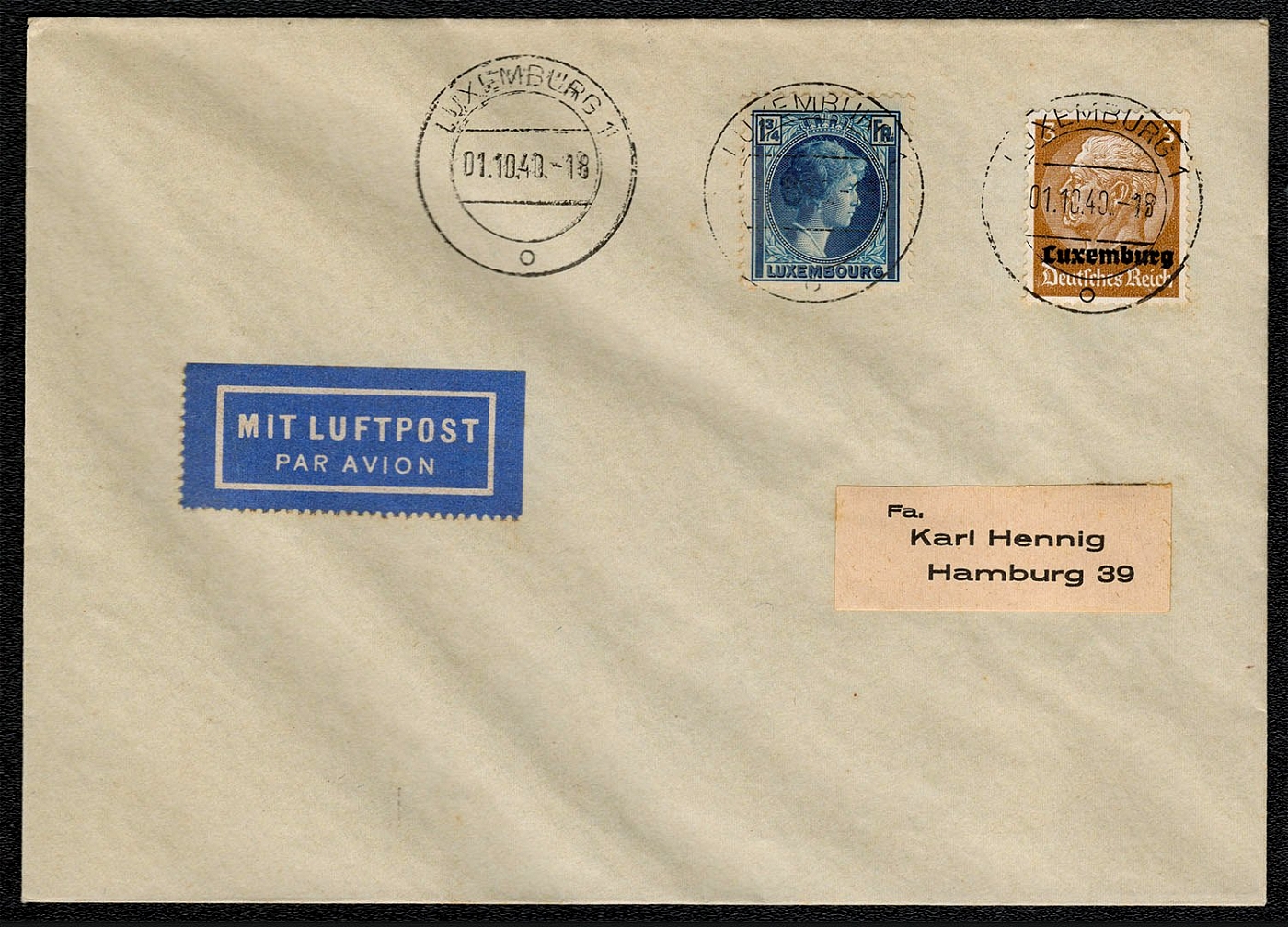
1940 German Occupation Luxembourg Official Cover with Scott Nos. 180 and N1 the first day of validity for the German issued stamps of occupied Luxembourg
"German Dienstpost cover with Scott Nos. 180 and N1 cancelled in Luxemburg on 1 October 1940, the first day of validity for the German issued stamps of occupied Luxembourg, now known as Luxemburg. The stamps of Luxembourg remained valid for postage until 2 October 1940. Officially permitted mixed-postages of stamps from Luxembourg and Germany, on one cover, were possible on these two days only and are extremely scarce. The people of Luxembourg are of French and German ethnicity, a majority of whom speak Letzeburgesch (Luxeinburgian), a Germanic tongue. French and German are used for the most part for administrative purposes. The population is predominantly Roman Catholic, with some Protestants (mostly Lutherans) and a small Jewish minority. The bulk of the population is concentrated in Luxemburg city and in the smaller cities of the southwest, which has been the grand duchy’s industrial heartland since the late 19""' century."
Unsold
738
-
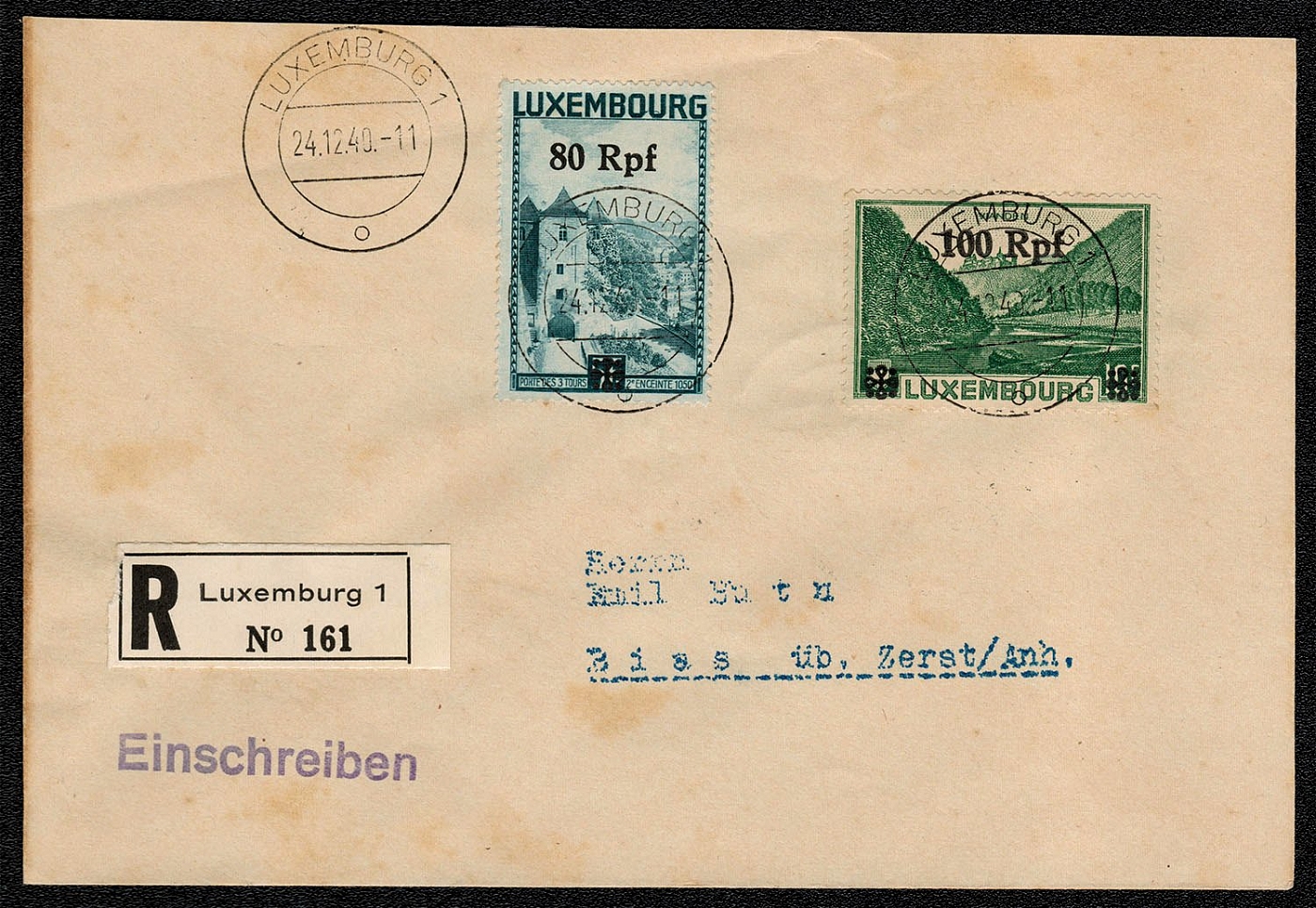
1940 German Occupation Luxembourg Official Cover with Scott Nos. N31 and N32, cancelled in Luxembourg
German Dienstpost cover with franked Scott Nos. N31 and N32, cancelled in Luxemburg on 24 December 1940. * * * During the war Berlin carried out a single-minded policy of Germanization. The French language was prohibited, and names and place-names were Germanized.
Unsold
739
-
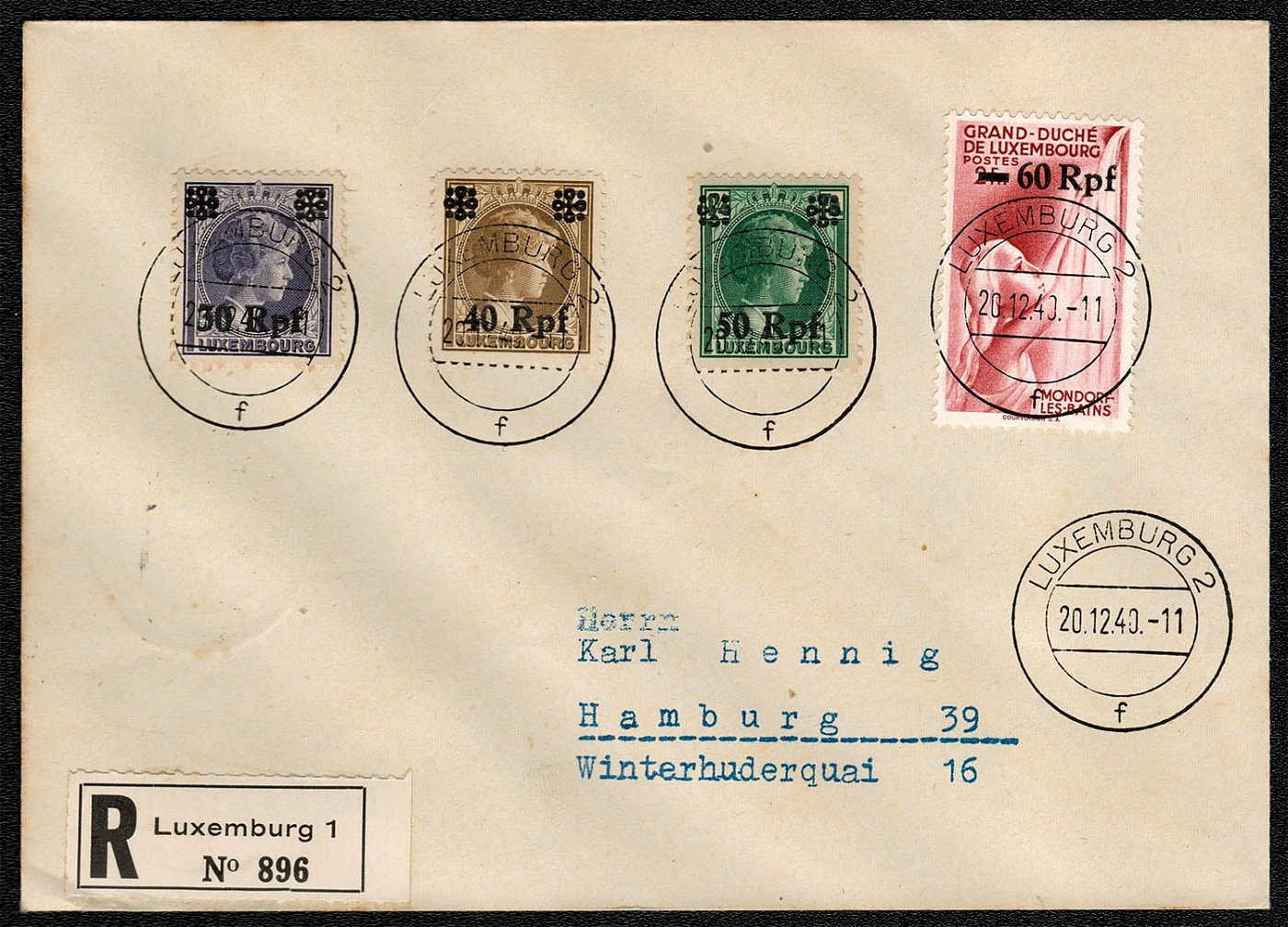
1940 German Occupation Luxembourg Official Cover with Scott Nos. N27-N30 cancelled in Luxembourg
German Dienstpost cover with Scott Nos. N27-N30 cancelled in Luxemburg on 20 December 1940. After German troops entered Luxemburg in violation of its neutrality, Grand Duchess Charlotte (1919-1964) and her government went to London via Paris and formed a government-in-exile.
Unsold
740
-
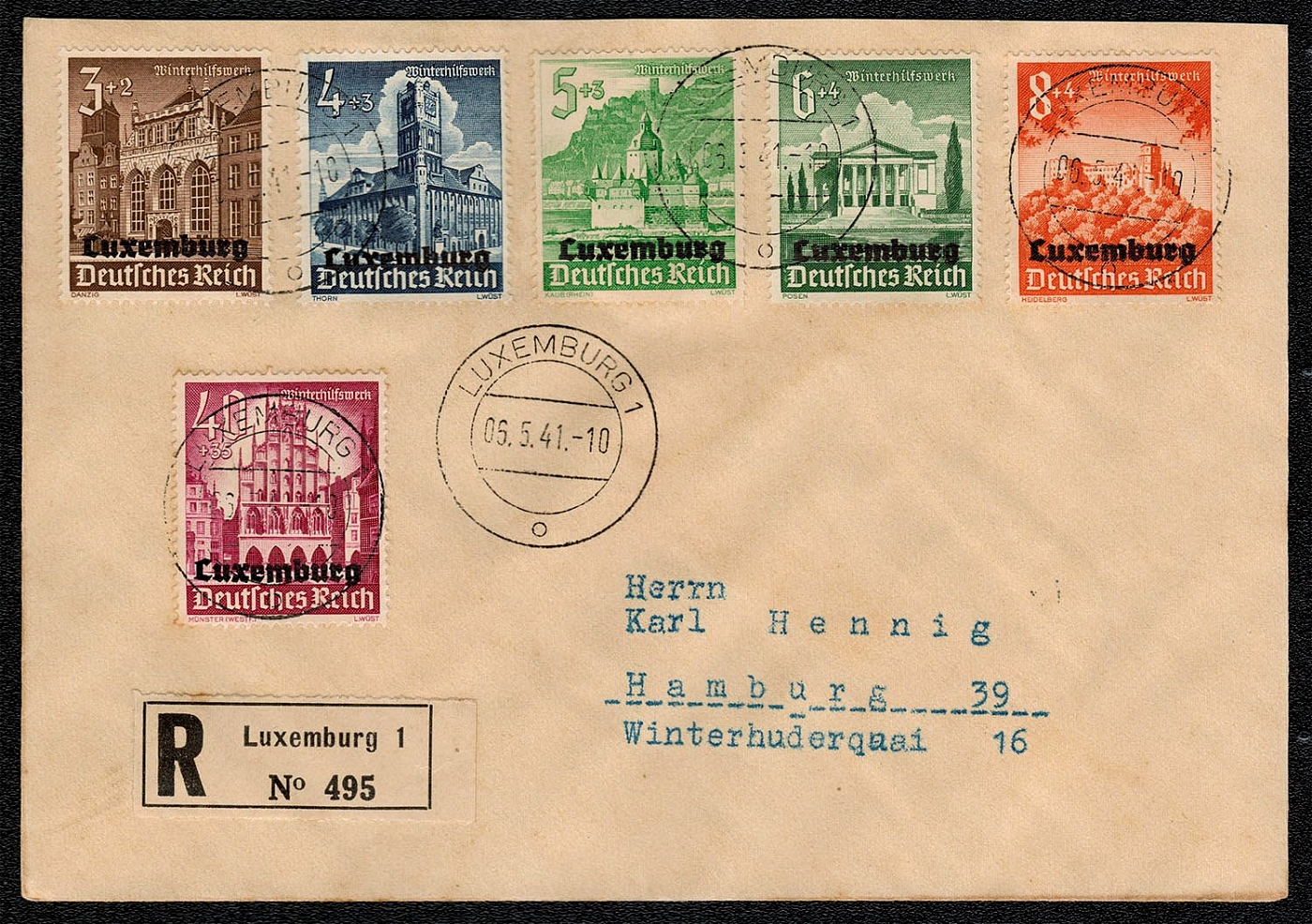
1941 German Occupation Luxembourg Official Cover with Scott Nos. NB1-NB6 cancelled in Luxembourg
German Dienstpost cover with franked Scott Nos. NB1-NB6, cancelled in Luxemburg on 6 May 1941. Eventually Luxemburg was annexed into the German Reich as part of the Moselgau Koblenz-Trier under Gauleiter Gustav Simon. On 30 August 1942 German laws were introduced, and the Luxemburg army was annexed into the German forces.
Unsold
741
-
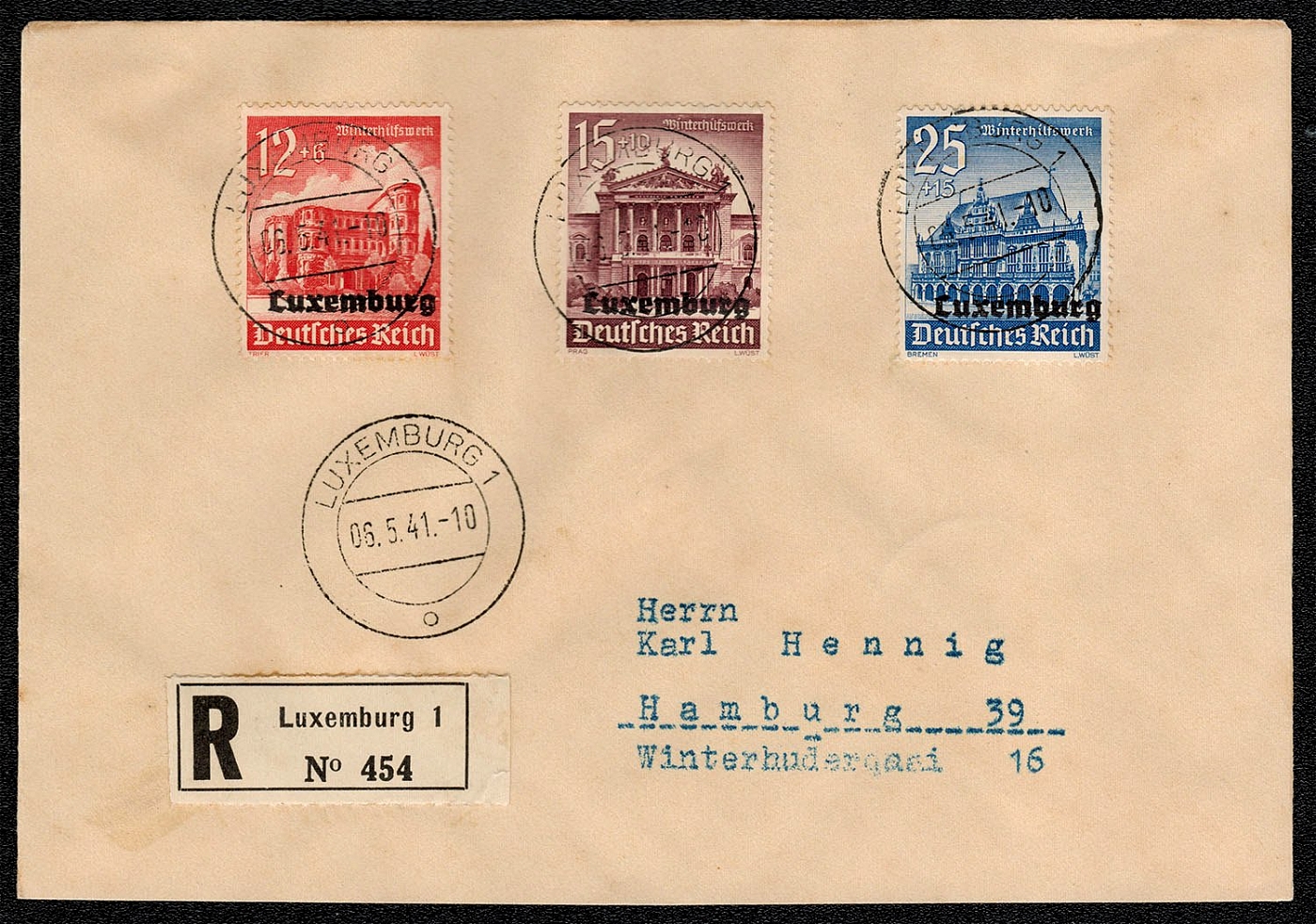
1941 German Occupation Luxembourg Official Cover with Scott Nos. NB7-NB9, cancelled in Luxembourg
German Dienstpost cover with franked Scott Nos. NB7-NB9, cancelled in Luxemburg, 6 May 1941. Gauleiter Gustav Simon, the civil administrator of Luxemburg, was born 2 August 1900 in Saarbriicken. Originally a teacher of commercial subjects, Simon joined the NSDAP in 1925 and became the full-time Bezirksleiter (District Leader) of the party in Trier-Birkenfeld in 1928, then of Koblenz-Trier in 1929.
Unsold
742
-
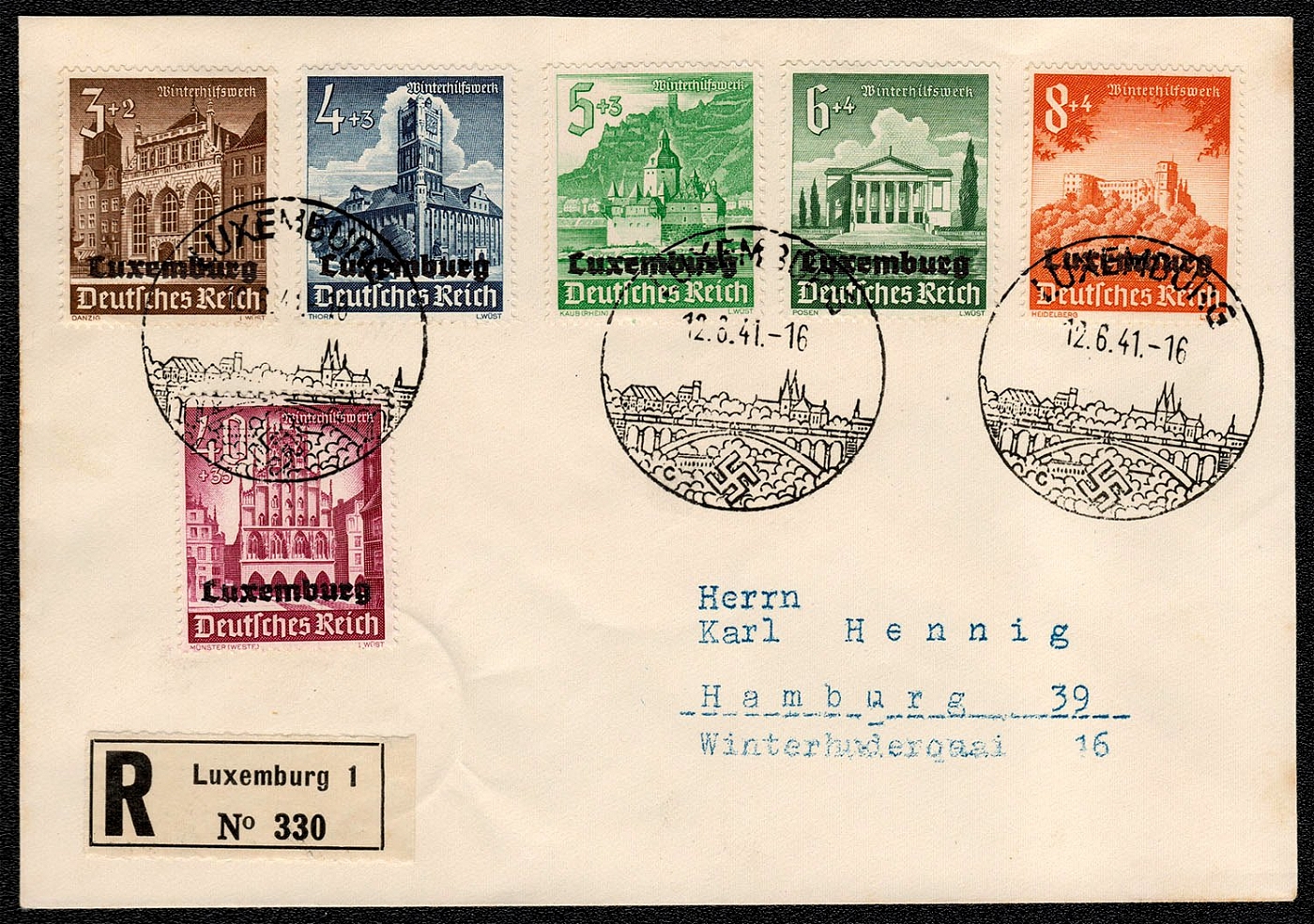
1941 German Occupation Luxembourg Official Cover with Scott Nos. NB1-NB6, cancelled in Luxembourg
German Dienstpost cover with franked Scott Nos. NB1-NB6, cancelled in Luxemburg, 12 June 1941. The special cancellation publicizes the “liberation” of Luxemburg. This cover is backstainped Hamburg, 16 June 1941. Inasmuch as the city of Luxemburg is only about 350 air miles from Hamburg, this was not particularly fast mail service even in wartime. * * * Prior to becoming the civil administrator of Luxemburg, Gauleiter Gustav Simon was elected to the Reichstag in 1930. In 1931 he was named Gauleiter (Administrative District Leader) of Koblenz-Trier-Birkenfeld (which was renamed Gau Moselland in 1942).
Unsold
743
-
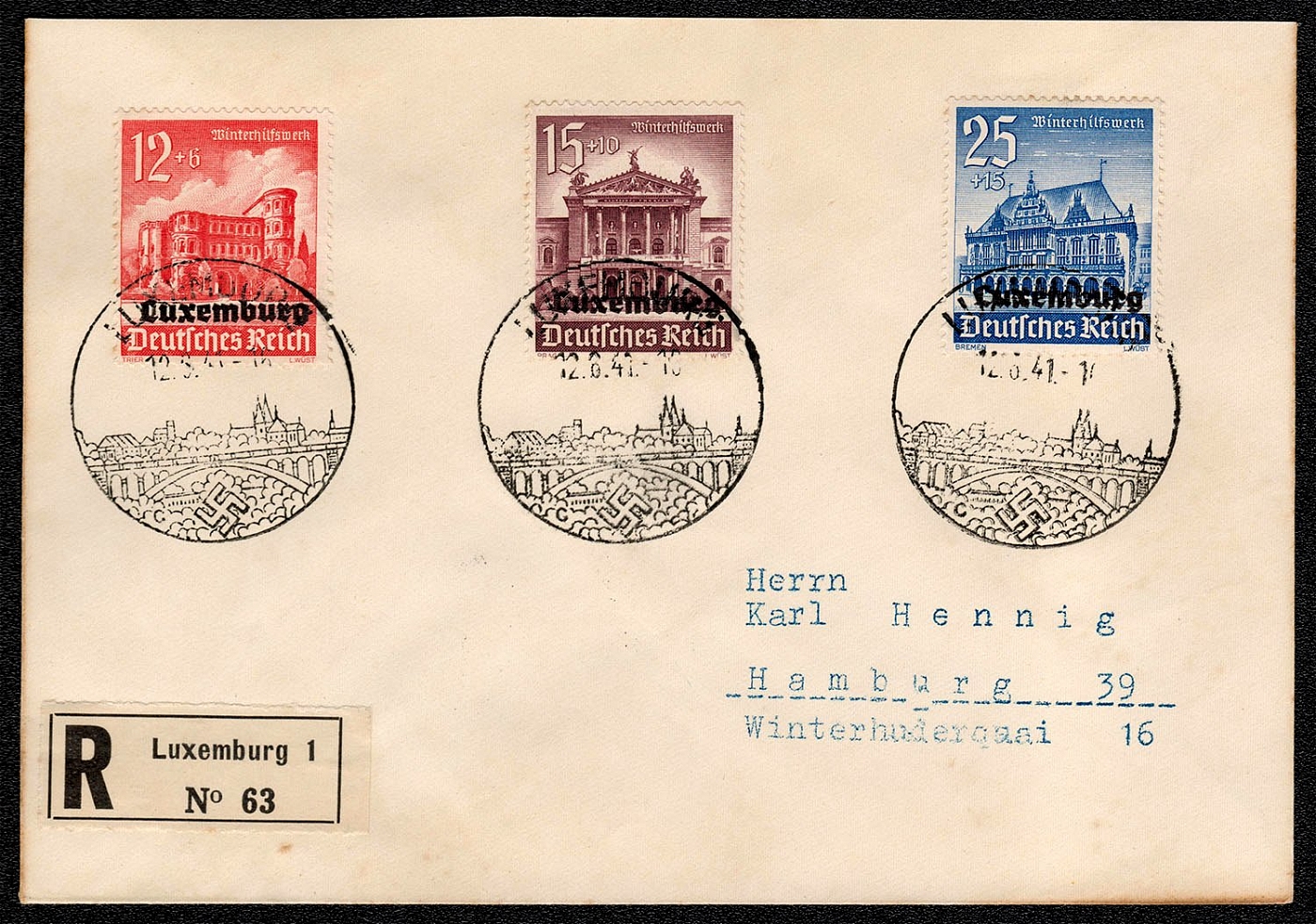
1941 German Occupation Luxembourg Official Cover with Scott Nos. NB7-NB9, cancelled in Luxembourg
German Dienstpost cover with franked Scott Nos. NB7-NB9, cancelled in Luxemburg, 12 June 1941. The special cancellation publicizes the “liberation” of Luxemburg. This cover is also backstainped Hamburg, 16 June 1941. * * * Gauleiter Simon took over the civil administration of Luxemburg in 1940, and was a Reich defense commissioner as of 1942. In early September 1944 the Allies liberated Luxemburg, but by the end of 1944 it was again briefly a battleground during Germany’s Ardennes Offensive. In April 1945, as the war in Europe was coming to an end, Gustav Simon committed suicide. The grand duchess returned with the government-in-exile, and national sovereignty was again established.
Unsold
744
-
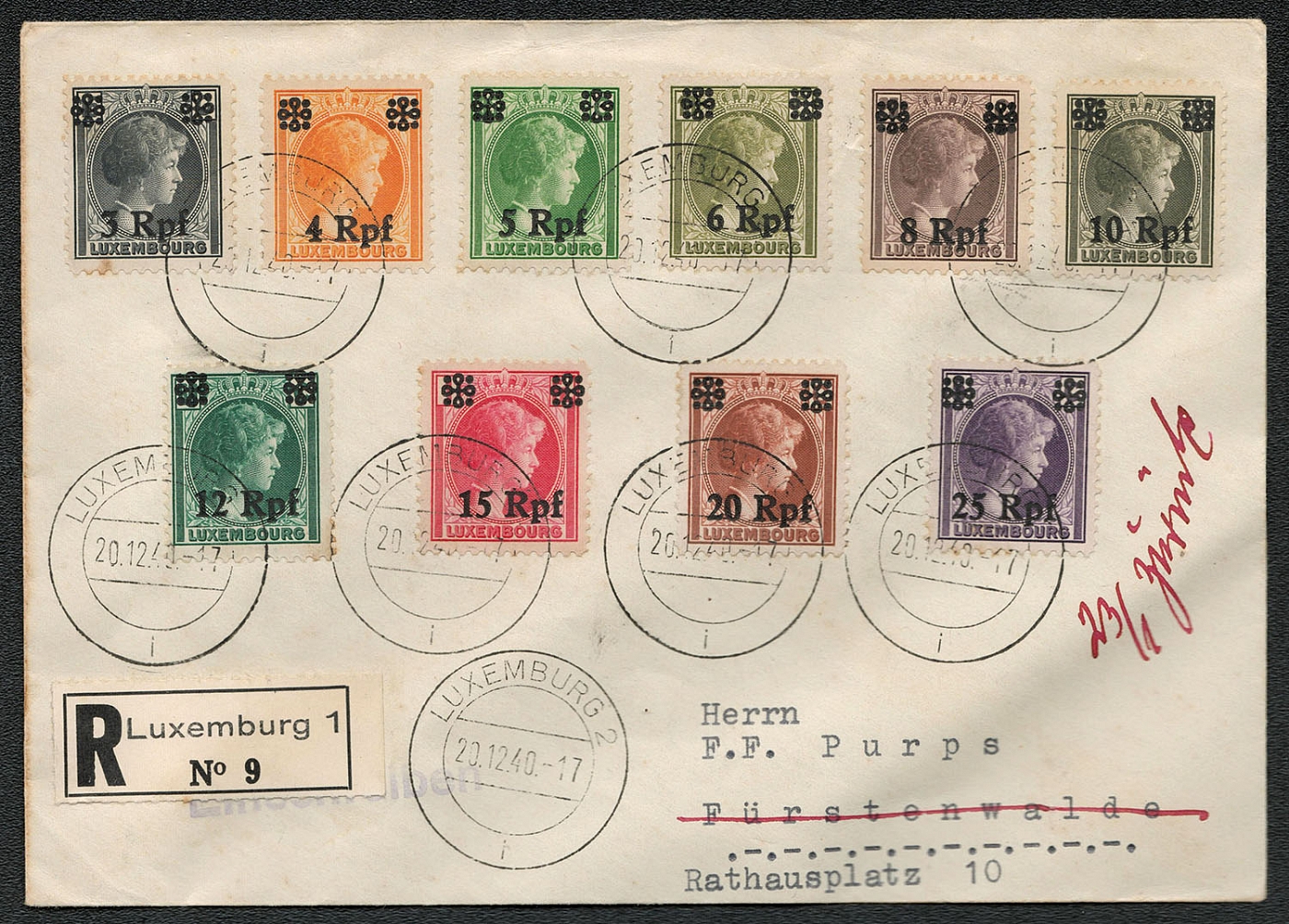
1940 German Occupation Luxembourg Official Cover with Scott Nos. N17-N26, cancelled in Luxembourg
German Dienstpost cover with Scott Nos. N17-N26 cancelled in Luxemburg on 20 December 1940. * * * At early dawn on 10 May 1940 the Germans struck all along the western front from the North Sea to Luxembourg. One spearhead drove along the Frisian coast, another thrust at the Yssel towards Utrecht, a third smashed at Maastricht and the fortress of Eben Emael commanding the Albert Canal, a fourth—the major attack—rolled through the rugged Ardennes towards the Meuse. Planes, bombed helpless cities, parachutists seized airfields and bridges, fifth columnists spread confusion and terror behind the lines. From The History of the Second World War Edited by Henry Steele Commager
Unsold
745
-
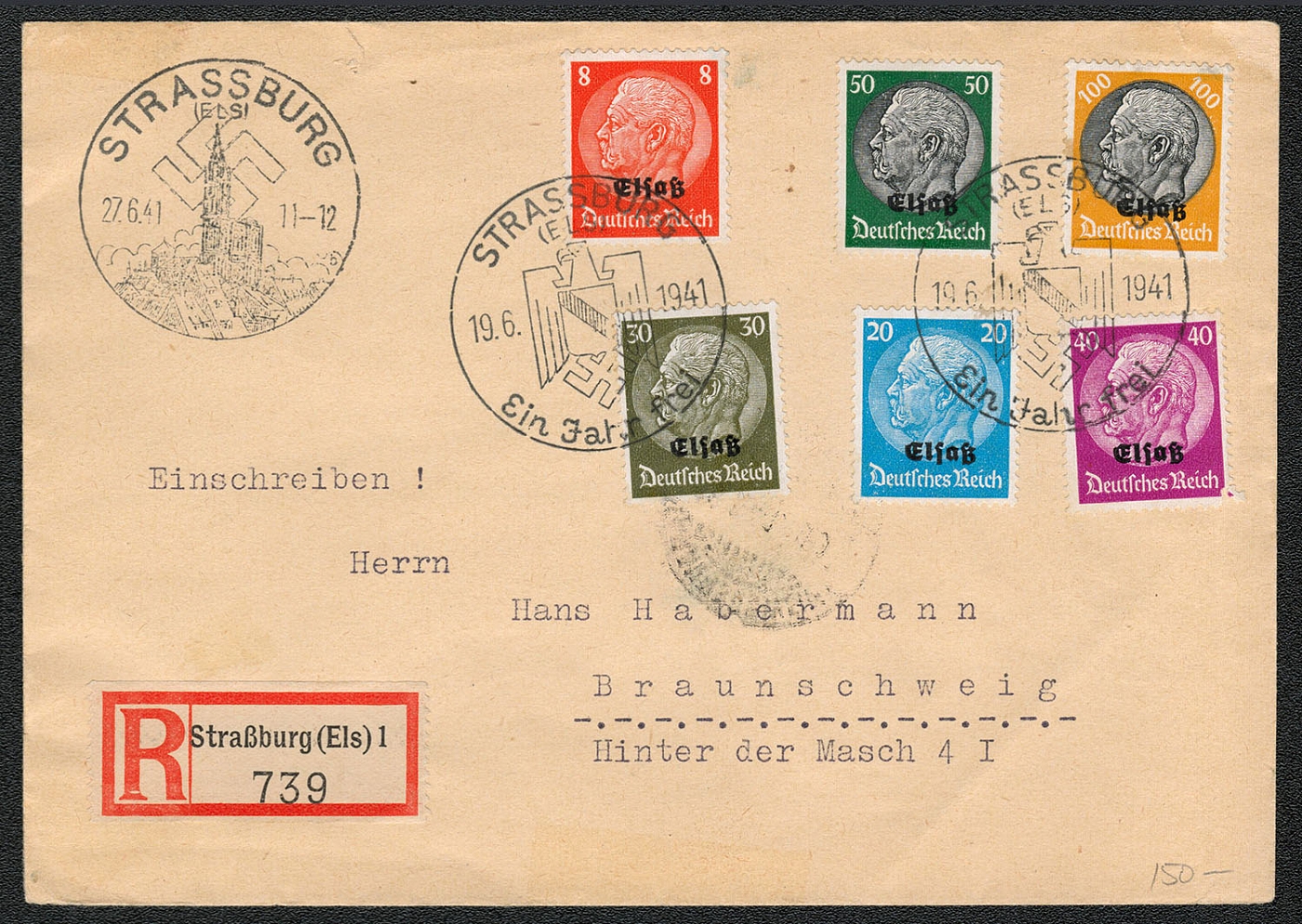
1941 German Occupation Alsace Registered cover with Special Postmark Strassburg (1)
1941 German Occupation Alsace Registered cover with Special Postmark Strassburg (1)
Unsold
746
-
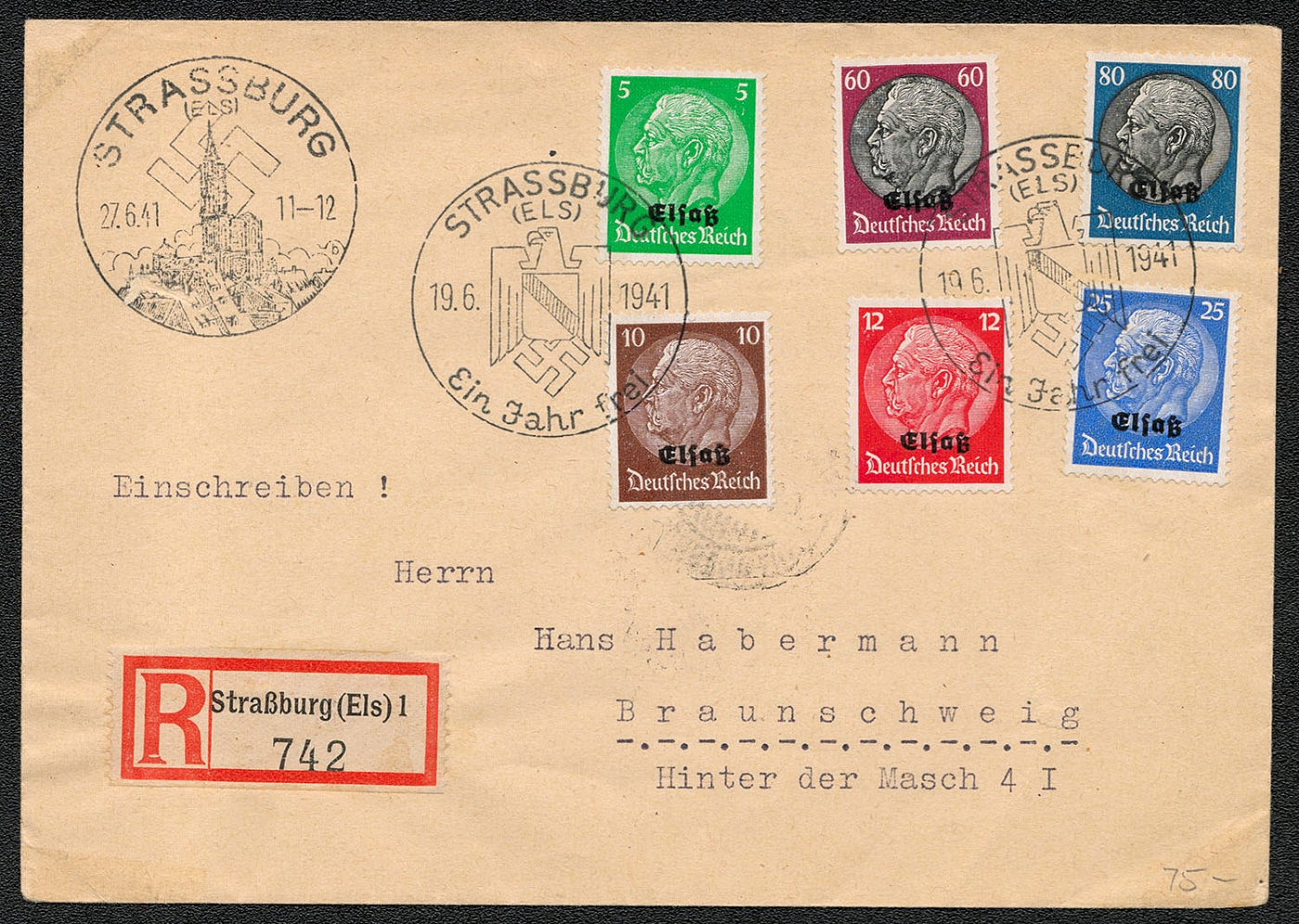
1941 German Occupation Alsace Registered cover with Special Postmark Strassburg (2)
1941 German Occupation Alsace Registered cover with Special Postmark Strassburg (2)
Unsold
747
-
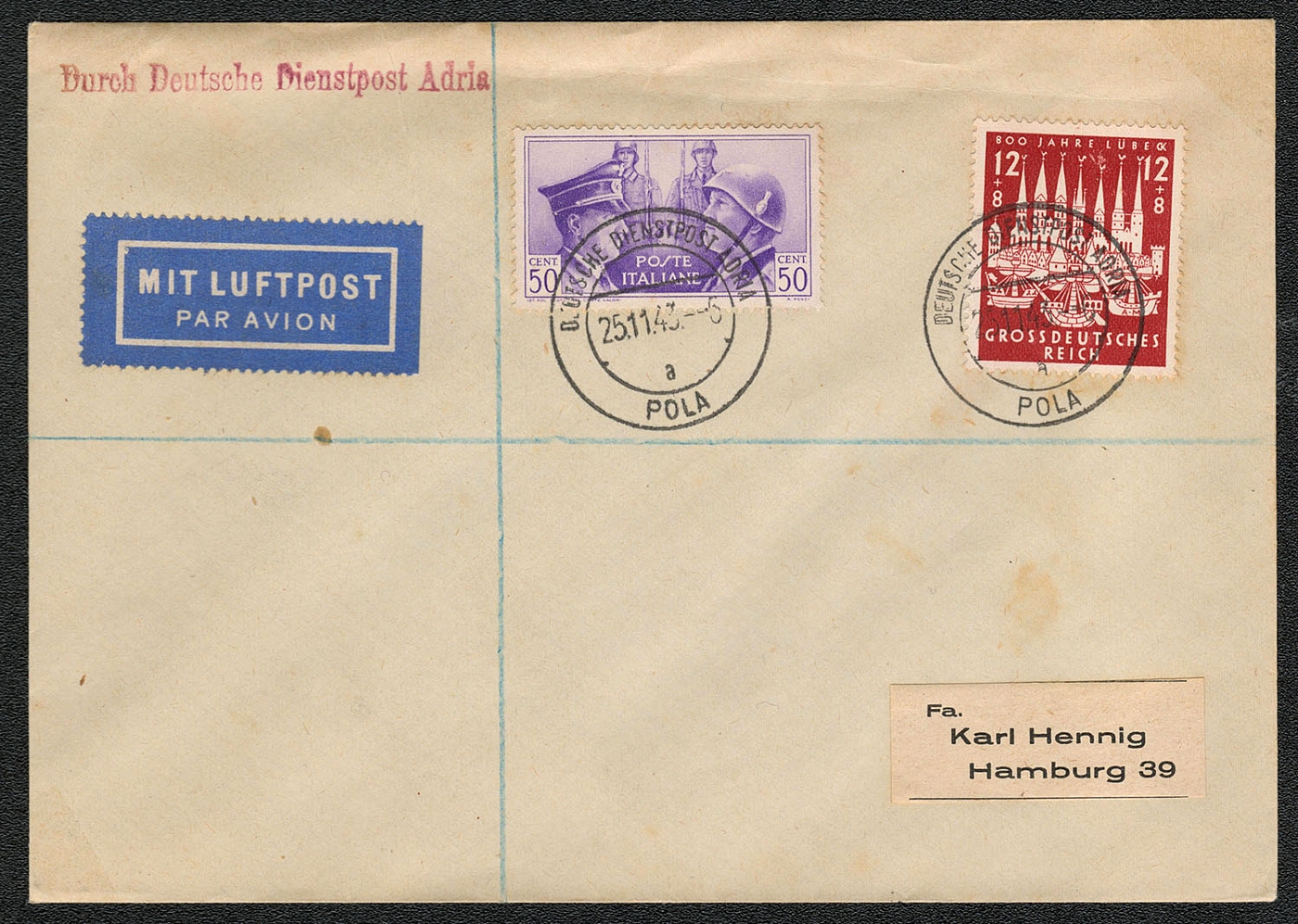
1943 German Official Mail Adria Mixed franked cover to Hamburg
1943 German Official Mail Adria Mixed franked cover to Hamburg
Unsold
748
-
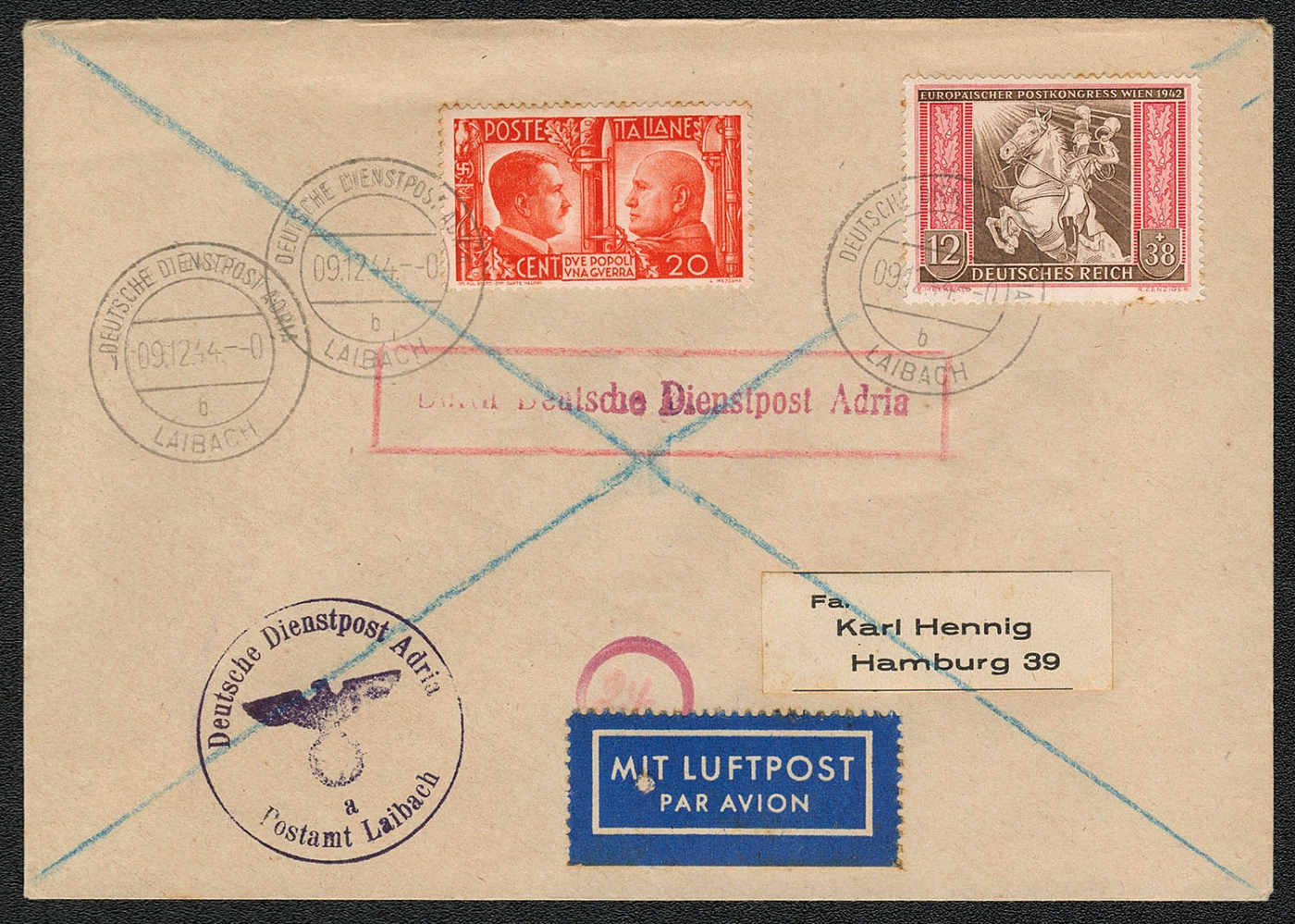
1944 German Official Mail Adria Mixed franked cover to Hamburg
1944 German Official Mail Adria Mixed franked cover to Hamburg
Unsold
749
-
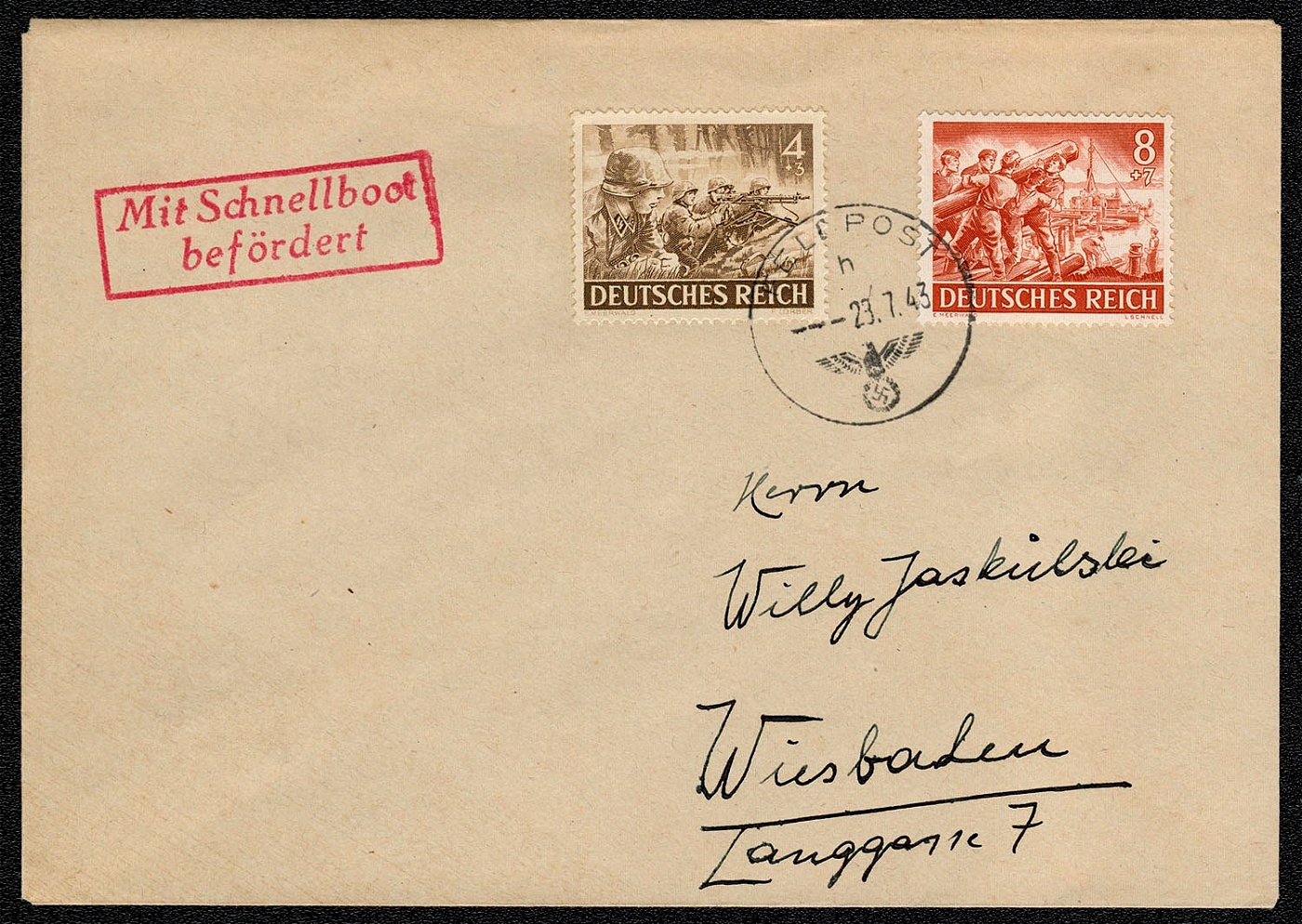
1943 cover dated 23 July and mailed from the English Channel Island of Jersey to Wiesbaden
Two values of the Heroes Memorial and Army Day issue (Scott Nos. B219 and B222) on a postally used cover dated 23 July 1943, and mailed from the English Channel Island of Jersey to Wiesbaden. The cover was transported by speedboat and carries a Field Post cancellation. # * * The English Channel Islands were taken by German forces in June 1940 following the fall of France. The Islands were the only territory under British sovereignty to be occupied by the Germans during World War II, and were held until May 1945.
Unsold
750
$5
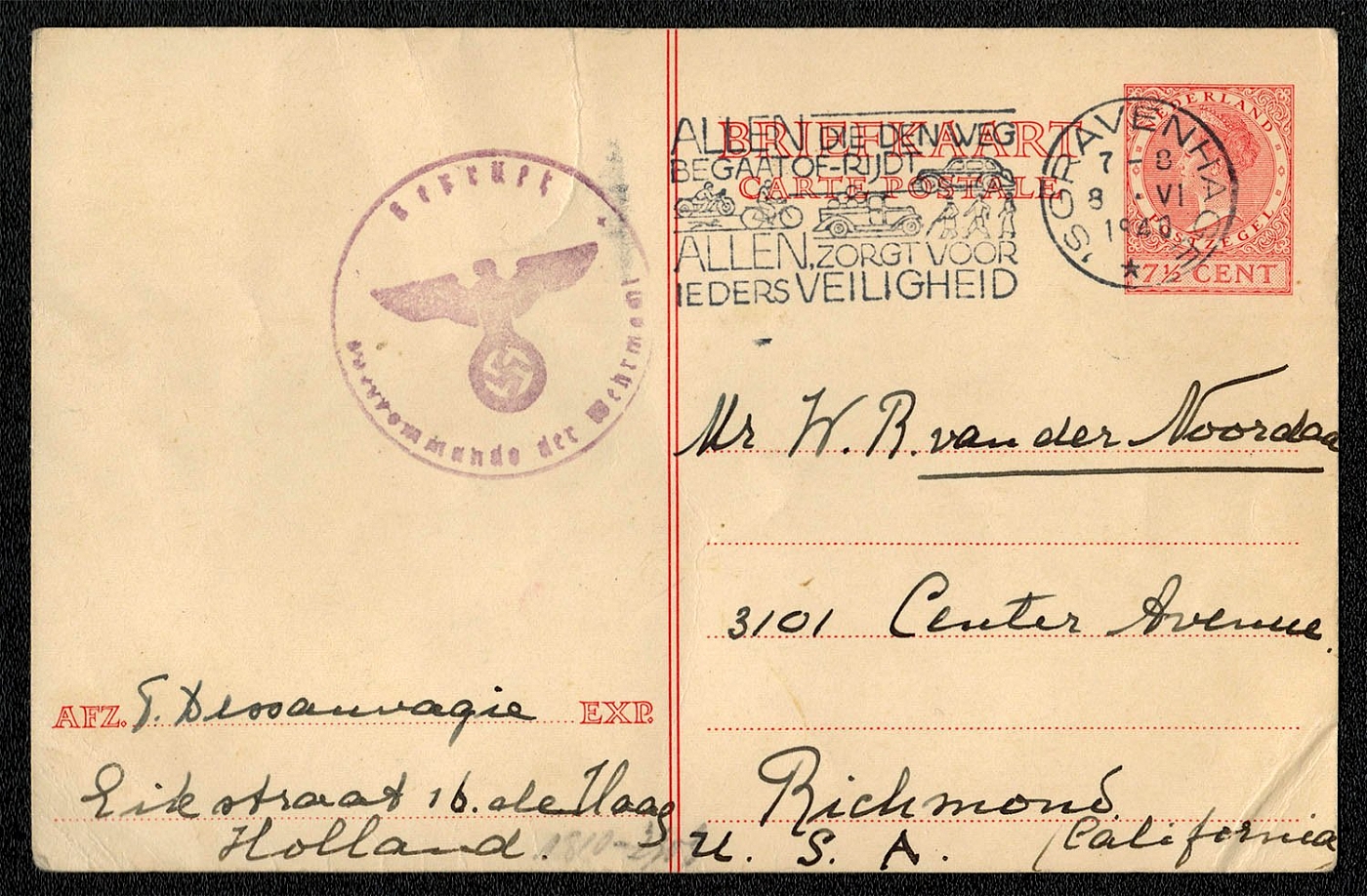
1940 Dutch postal card mailed from ‘s Gravenhage to Richmond, California on 8 June
Dutch postal card mailed from ‘s Gravenhage to Richmond, California on 8 June 1940. The as-yet-untranslated slogan postmark depicts various forms of transportation from walking through bicycling, motorcycling, and a pickup truck and passenger car. § The Hague is the de facto seat of the Dutch government. Originally a hunting seat of the counts of Holland, it has been the royal residence since 1250, and was the seat of the Second Peace Conference in 1907 and the World Court, 1929-30. In 1940, the population numbered 482,397. At early dawn, May 10, 1940, the Germans struck along the western front from the North Sea to Luxembourg. One spearhead drove along the Frisian coast, another thrust at the Yssel toward Utrecht, a third smashed at Maastricht and the fortress of Eben Emael commanding the Albert Canal. A fourth—the major attack—rolled through the rugged Ardennes towards the Meuse. Planes bombed helpless cities, parachutists seized airfields and bridges, fifth columnists spread confusion and terror behind the lines. The Dutch put up a stout resistance, but were speedily overwhelmed. Within four days most of Holland was in German hands.
Sold for:
$5
751
$5
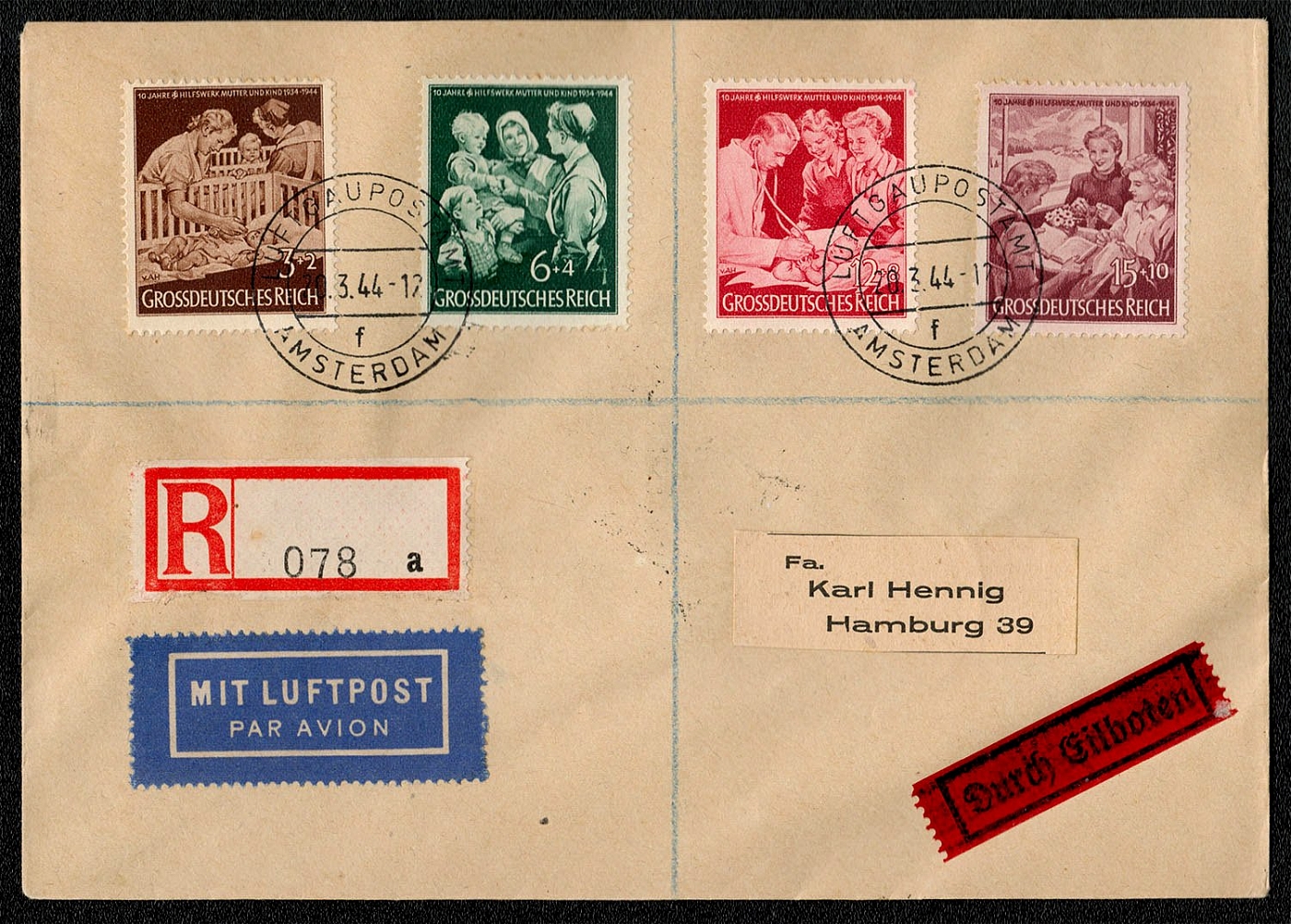
1944 cover franked with Scott Nos. B253-256 posted in Amsterdam on 20 March
Philatelic cover franked with Scott Nos. B253-256 posted in Amsterdam on 20 March 1944. The notation “Luftgaupostamt” in the cancellation refers to the post office of the air force administrative command, i.e., the administrative area of a Luftflotte, a territorial and tactical command of the Luftwaffe.
Sold for:
$5
752
$5
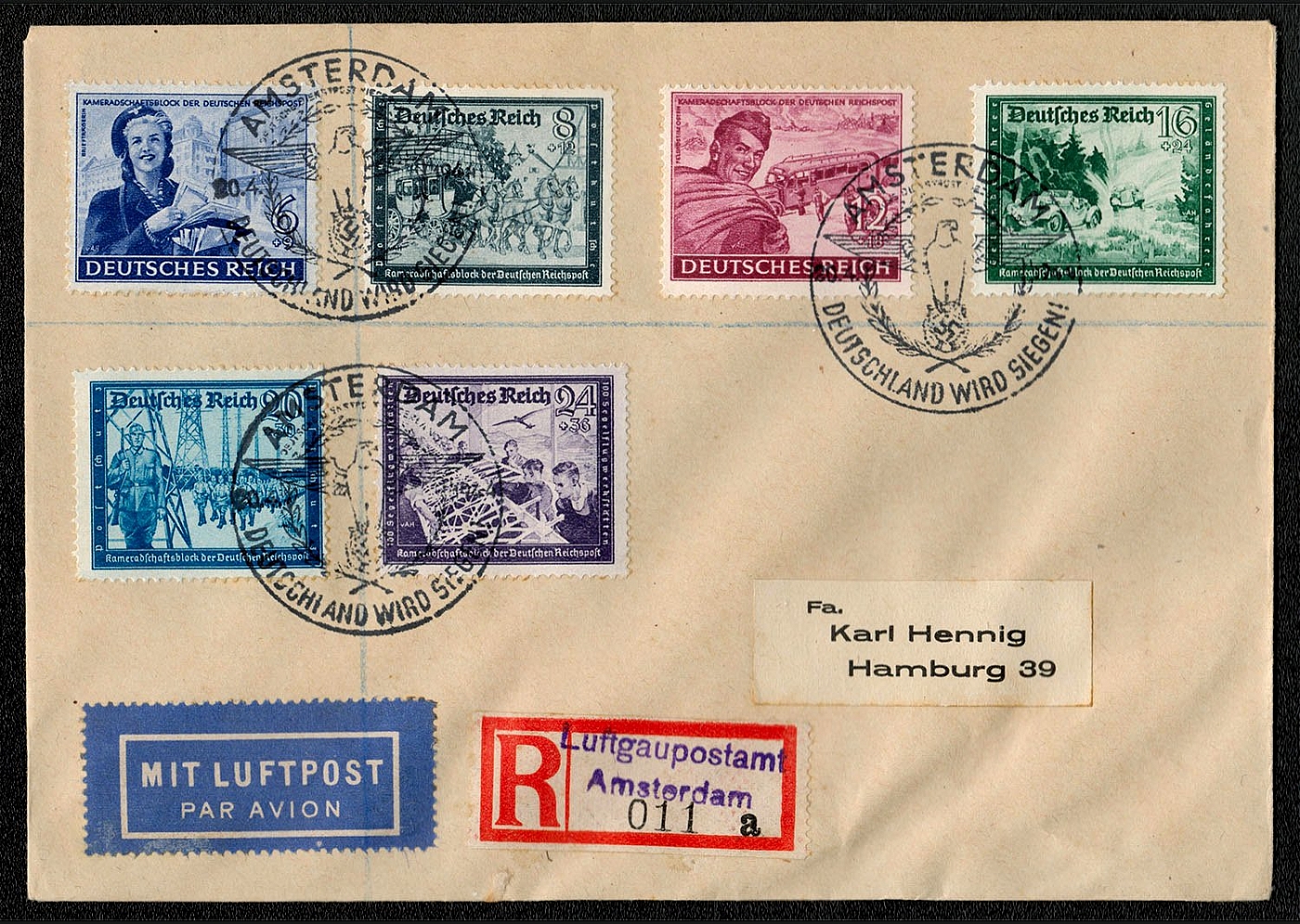
1944 Registered cover franked with Scott Nos. B272-277 posted in Amsterdam on 20 April
Philatelic cover franked with Scott Nos. B272-277 posted in Amsterdam on 20 April 1944. The special cancellation “Deutschland wird siegen!” (Germany will be victorious!) was in use only on Hitler’s Birthday in Amsterdam, Berlin, Braunau, Munchen, Nurnberg, and Wien. “Luftgaupostamt Amsterdam” stamped on the registration label refers to the post office of the air force administrative command, i.e., the administrative area of a Luftflotte, a territorial and tactical command of the Luftwaffe.
Sold for:
$5
753
$6
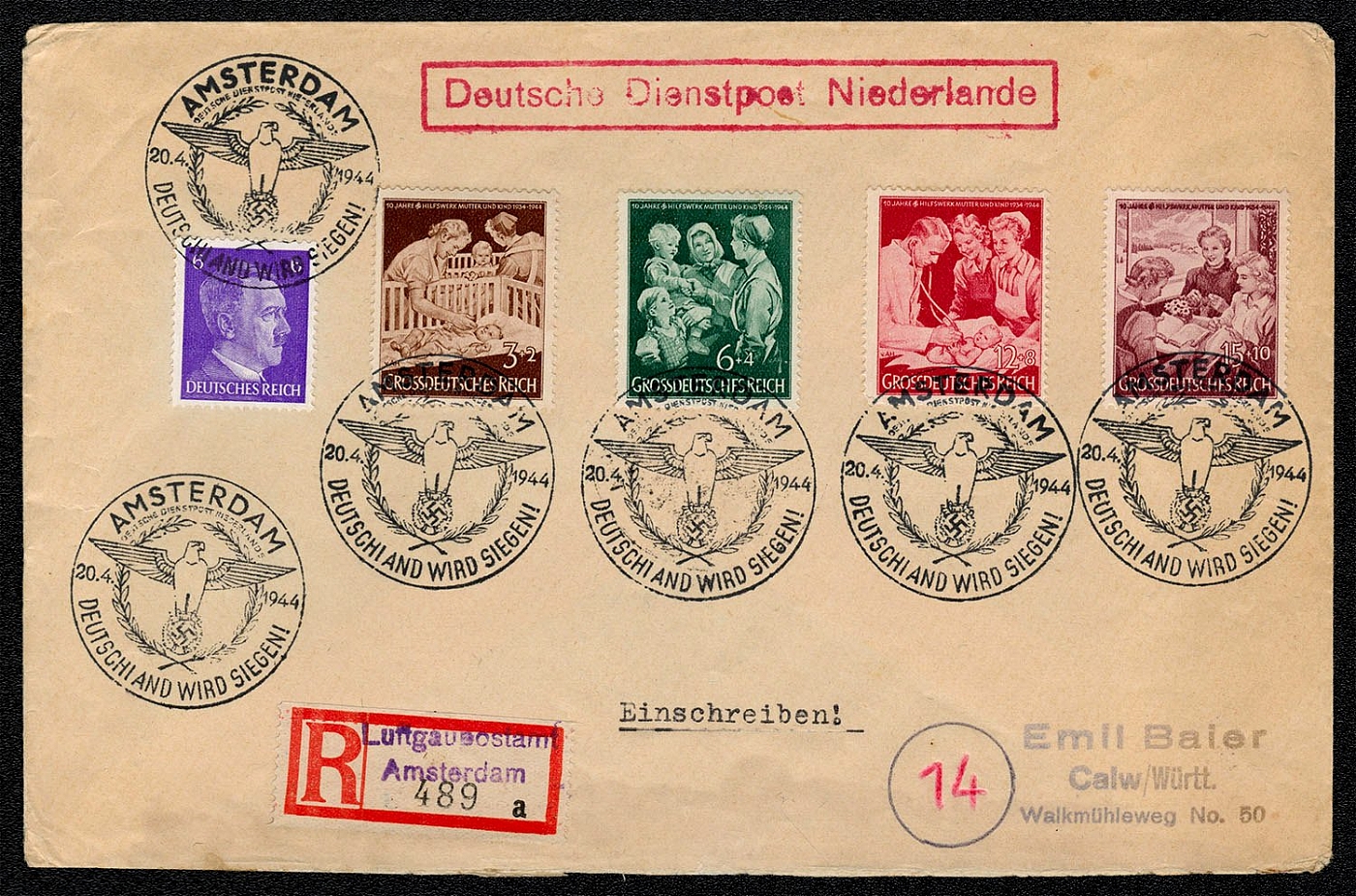
1944 Registered cover franked with Scott Nos. B253-256 and No. 510 mailed in Amsterdam Special Postmark Germany will be victorious!
Postally used cover franked with Scott Nos. B253-256 and No. 510 mailed in Amsterdam on 20 April 1944. The special cancellation “Deutschland wird siegen!” (Germany will be victorious!) was in use only on Hitler’s birthday in Amsterdam, Berlin, Braunau, Munchen, Nurnberg, and Wien. The registration label stamped “Luftgaupostamt” refers to the post office of the air force administrative command, i. e., the administrative area of a Luftflotte, a territorial and tactical command of the Luftwaffe.
Sold for:
$6
754
$10
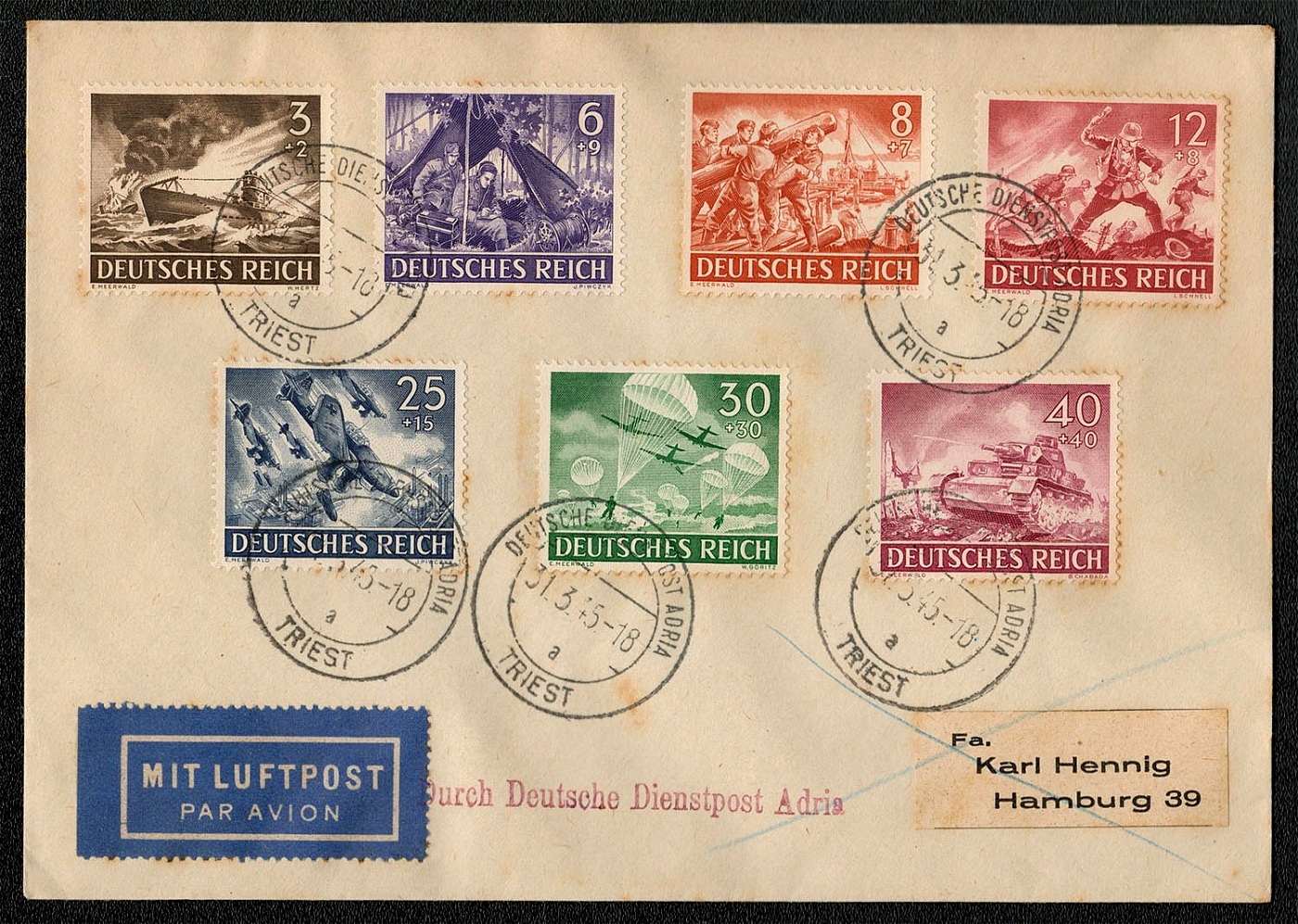
1945 German Official Mail Adria cover to Hamburg franked with Army Day and Hero Memorial Day
Dienstpost cover franked with 1943 Army Day and Hero Memorial Day Commemoratives Scott No. B218 (Submarine), B221 (Signal Corps), B222 (Engineer Corps), B223 (Grenade Assault), B225 (Dive Bombers), B227 (Paratroops) and B228 (Tank). This set was originally issued 21 March 1943 and apparently remained on sale until the end of the war. Note the unusually late date of posting. 31 March 1945, Trieste, Italy Trieste, the capital city of Trieste Province in the autonomous region of Friuli-Venezia Gioula in northeast Italy, sits at the head of the Adriatic Sea. Trieste has been an important commercial and military seaport since ancient times.
Sold for:
$10
755
-
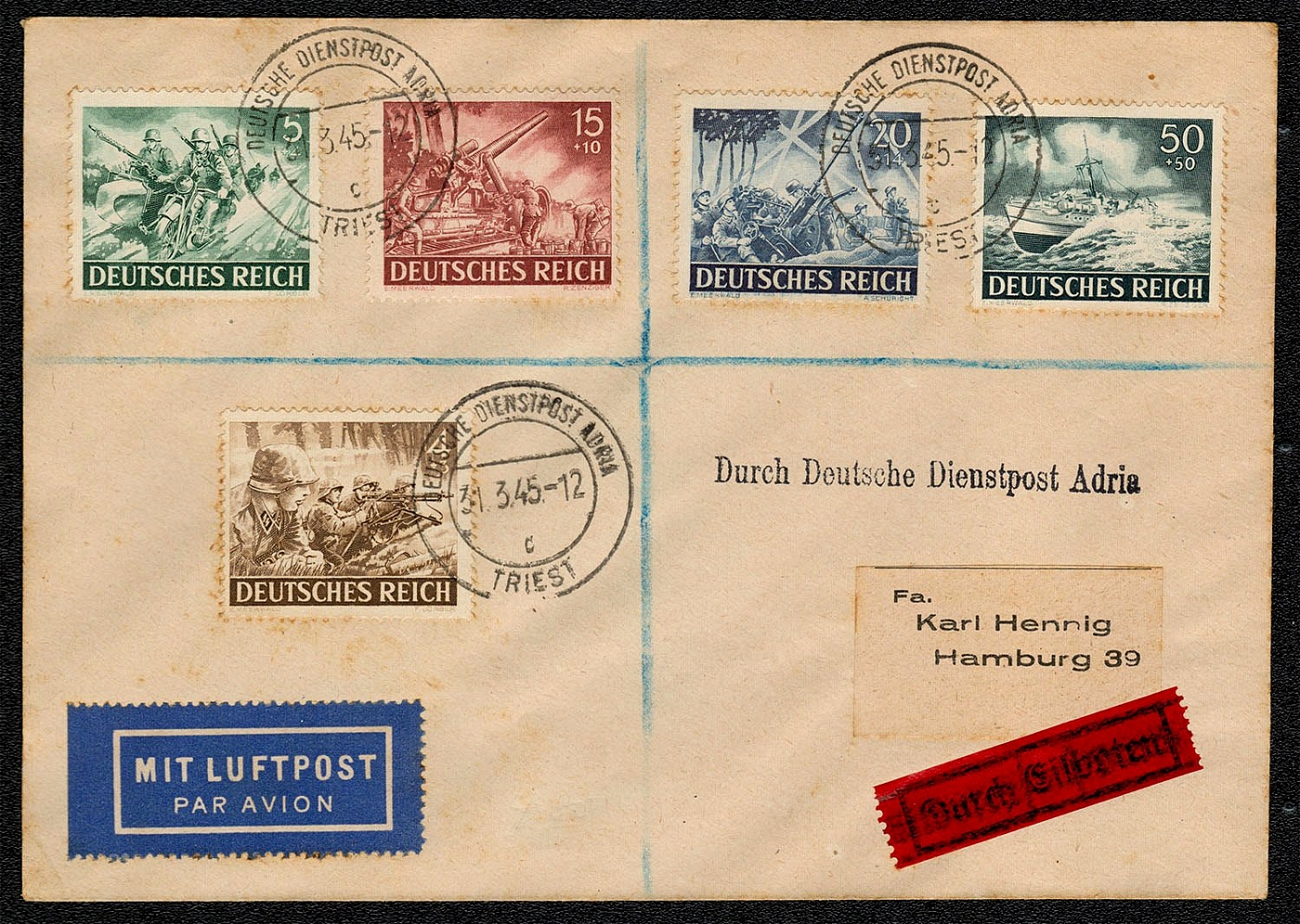
1945 German Official Mail Adria cover to Hamburg franked with Army Day and Hero Memorial Day (2)
"Dienstpost cover franked with 1943 Army Day and Hero Memorial Day Commemorative.? Scott No. B219 (Schutz Staffel Troops), B220 (Motorized Marksmen), B225 (Heavy Artillery), B226 (Anti-aircraft units in action), B229 (Speed Boat). This set was originally issued 21 March 1943 and apparently remained on sale until the end of the war. Note the unusually late date of posting. 31 March 1945, Trieste, Italy Following a harsh winter, the Allied assault in the South of France and Northern Italy was renewed and supported by air power. In mid-April 1945, the U.S IO""1 Mountain Division breached the mountain positions above Bologna, breaking out into the Po Valley. By 20 April, the 8""' Army had passed through the Argenta Gap. German defensive withdrawals collapsed as US forces moved east and west of Verona. The US 8lh Army continued its sweep east through Venezia, reaching Trieste by 2 May 1945 in advance of Tito’s forces."
Unsold
756
$10
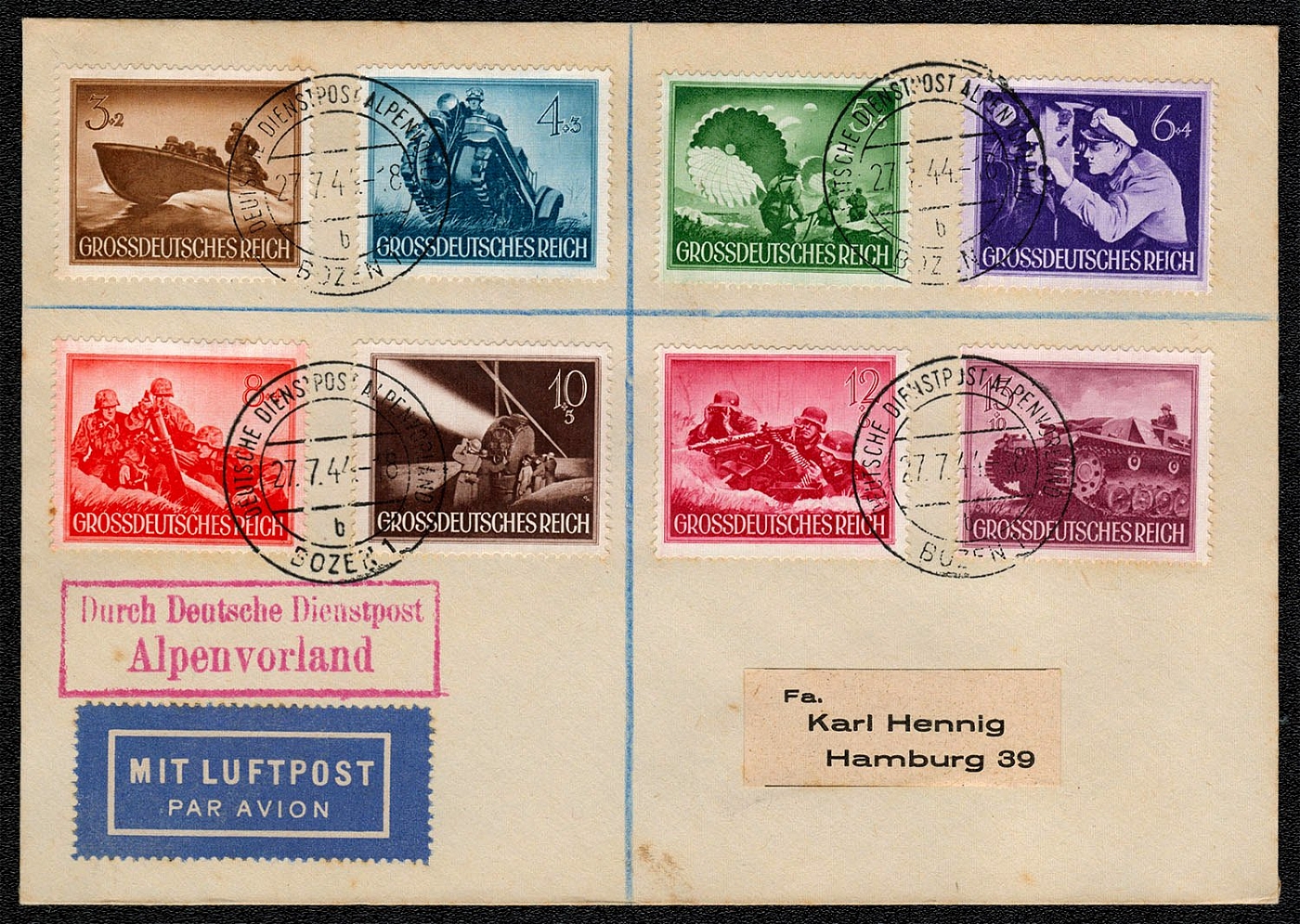
1944 German Official Mail Prealps cover to Hamburg franked with Army Day and Hero Memorial Day
Dienstpost cover franked with 1944 Hero Memorial Day Semi-postal Commemoratives, Scott B257-264: (3+2 pf, Assault Boat), (4+3 pf, Chain Wheel Vehicle), (5+3 pf, Paratroops), (6+4 pf, Submarine Officer), (8+4 pf, Schutz Staffel Grenade Throwers), (10+3 pf, Search Light), (12 +6 pf, Infantry), (15+10 pf, Self-propelled Gun). Posted in Bozen, Alpenvorland on 27 July 1944. Bozen, or Bolzano in Italian, is a province in South Tirol at the confluence of the Isarco and Adige rivers 87 miles NNW of Venice. In modern times it has been a trade center for a region producing wine, fruit, aluminum and steel.
Sold for:
$10
757
$10
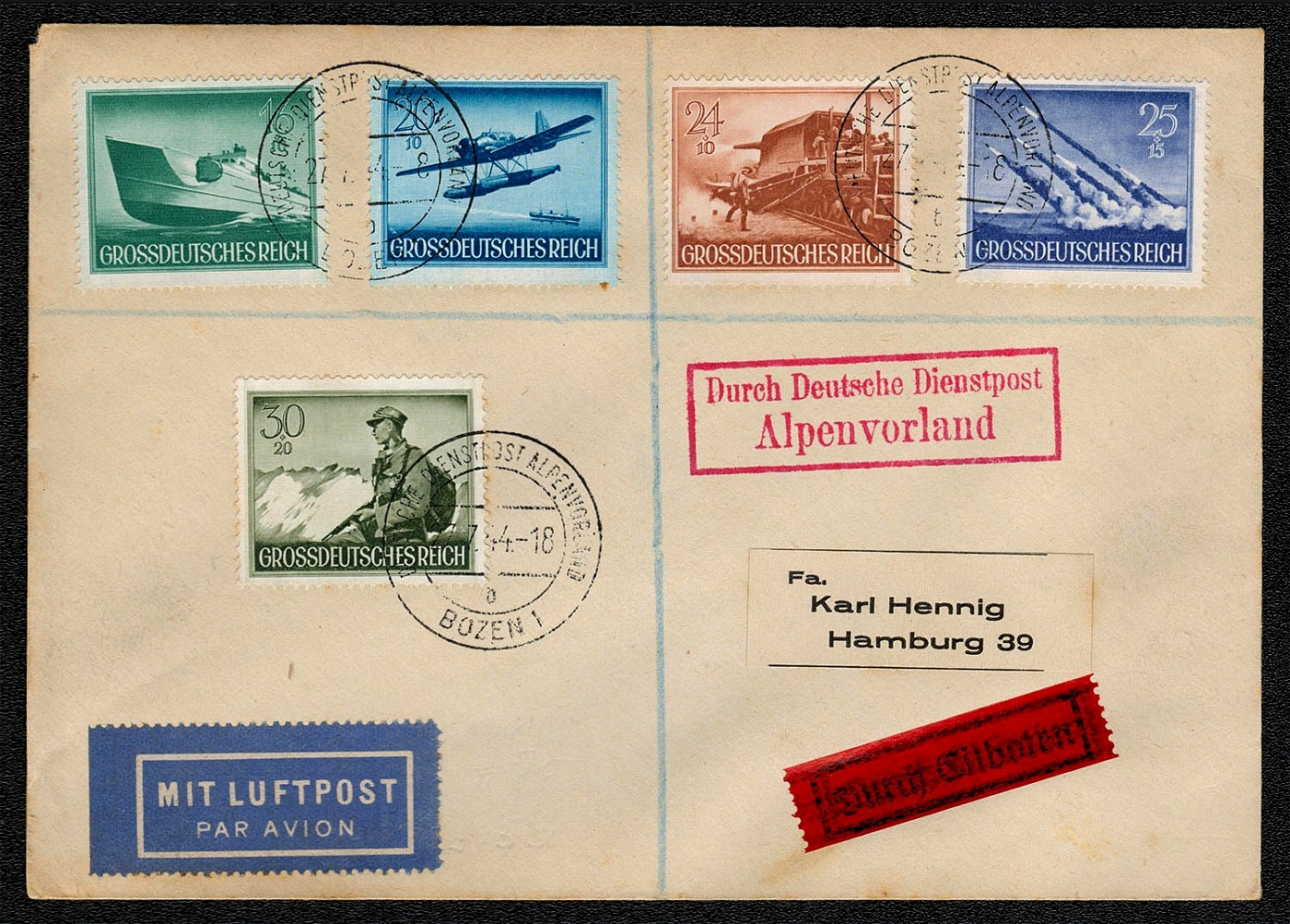
1944 German Official Mail Prealps cover to Hamburg franked with Army Day and Hero Memorial Day (2)
Dienstpost cover franked with 1944 Hero Memorial Day Semi-postal Commemoratives, Scott B265-269: (16+10 pf, Speed Boat), (20+10 pf, Sea Raider), (24+10 pf, Railway Artillery), (25+15 pf, Rockets), (30+20 pf, Mountain Trooper). Posted in Bozen, Alpenvorland on 27 July 1944. Bozen, or Bolzano, is an ancient Roman town. It fell to the Lombards in 680 A.D. and to the Franks in 740. It was the seat of Bavarian border countships, and fell to the episcopate of Trent in 1027. It was next under the Hapsburgs from 1363, sharing the history of the Tirol. It was conquered by Italy in 1918, and occupied by German Forces in the latter stages of World War II.
Sold for:
$10
758
$10
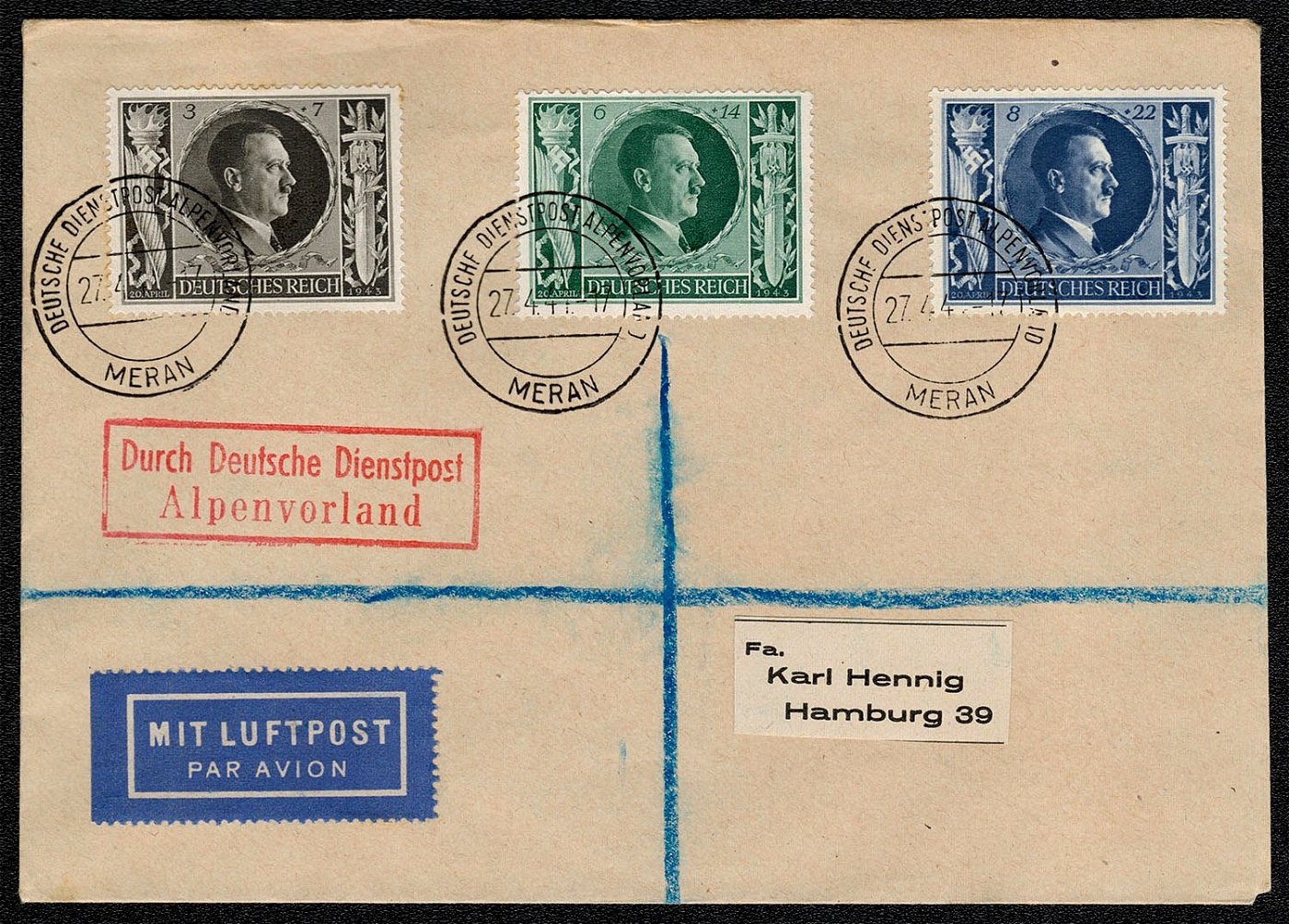
"1944 German Official Mail Prealps cover to Hamburg franked with Commemoratives honoring Hitler’s 54""' birthday"
"Dienstpost cover franked with 1943 Commemoratives honoring Hitler’s 54""' birthday (Scott Nos. B231-3). Posted in Meran, Alpenvorland on 27 April 1944. * * * Meran or Merano in Italian, is a commune in the Bolzano province of Trentino-Alto Adige in northeastern Italy on the slope of the Alps. This area was known as Alpenvorland (Foothills of the Alps) by the Germans during the Third Reich era."
Sold for:
$10
759
$12
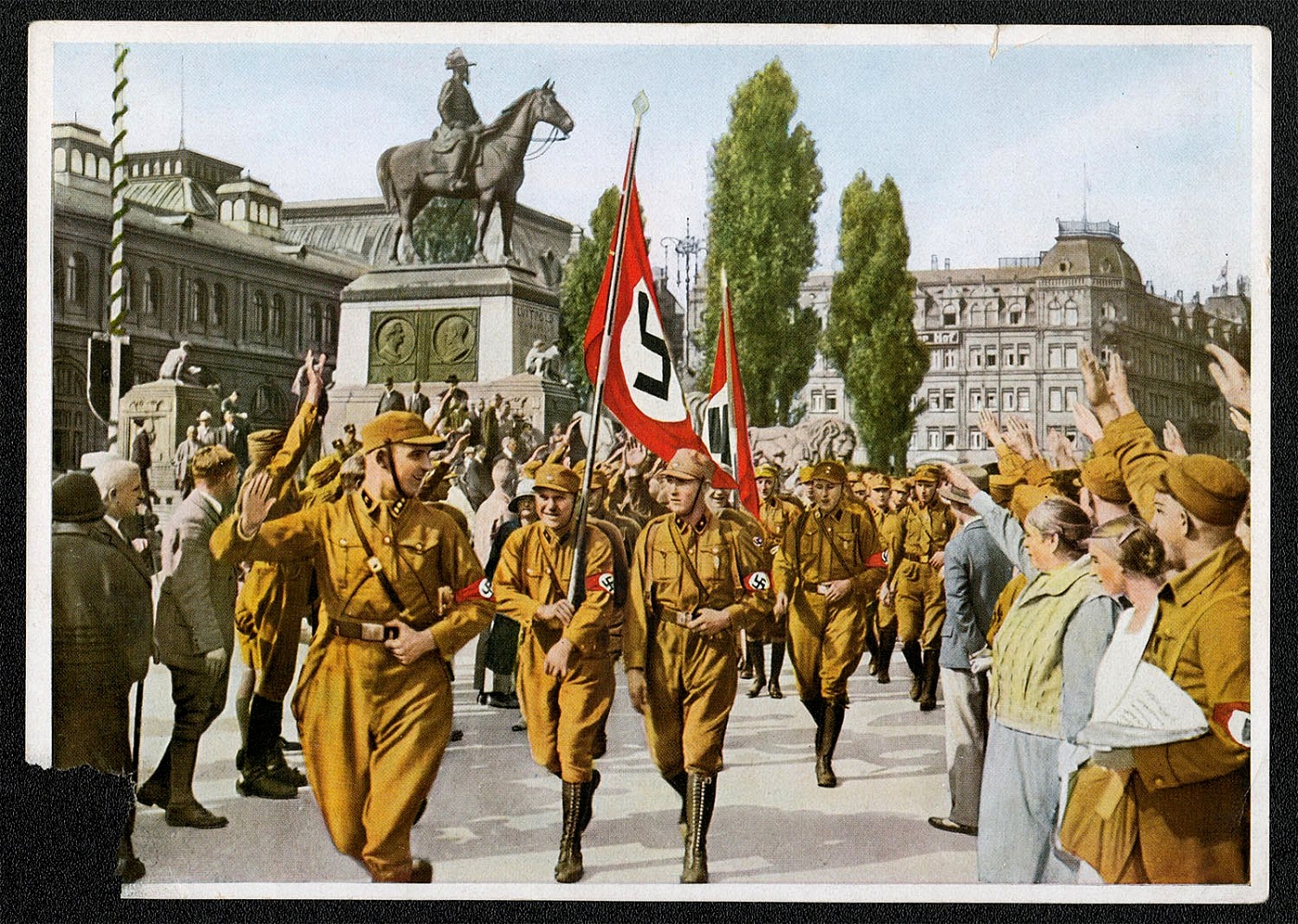
1933 Horst Wessel leads his Storm Assault NSDAP, Propaganda Card
Horst Wessel leads his Sturm in Nurnberg, 1929 Photo by Heinrich Hoffmann. Horst Wessel provided National Socialism with its greatest martyr. “One of the neighborhood leaders of the S.A. in Berlin, he was the son of a Protestant chaplain, who had forsaken his family and his studies and gone to live in a slum with a former prostitute and devote his life to fighting for Nazism. He was murdered by Communists in February 1930 and would have passed into oblivion along with hundreds of other victims of both sides in the street wars had it not been for the fact that he left behind a song whose words and tune he had composed. The Horst Wessel song soon became the official song of the Nazi party and later the second official anthem (after “Deutschland liber Alles”) of the Third Reich. Horst Wessel himself, thanks to Dr. Goebbels’ skillful propaganda, became one of the great hero legends of the movement, hailed as a pure idealist who had given his life for the cause.”
Sold for:
$12
760
$60
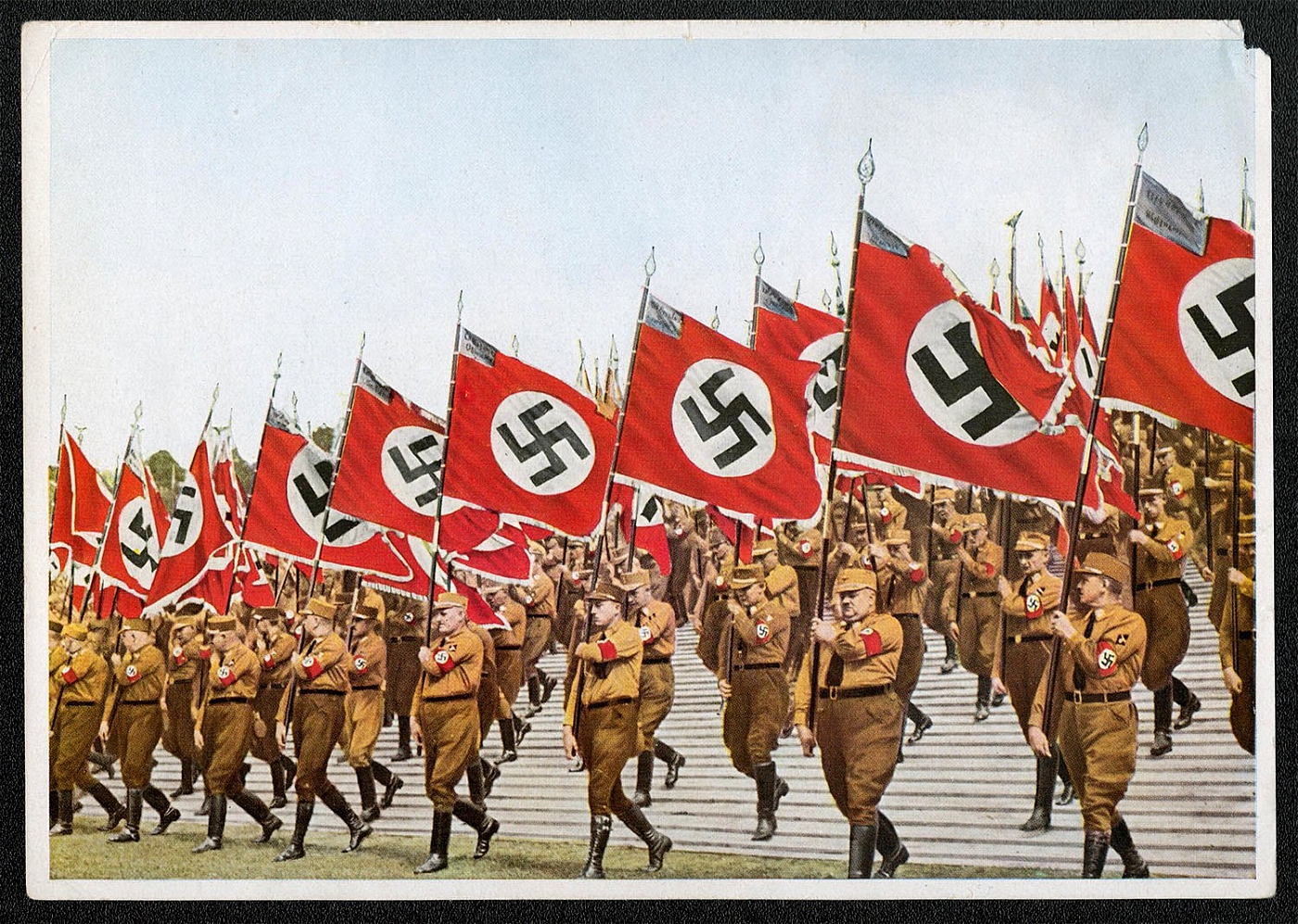
1933 The Roll Call of the Political Administrators NSDAP, Propaganda Card
The Roll Call of the Political Administrators. Marching with flags at the 1933 Nurnberg Party Rally. On 2 September 160,000 political leaders paraded in the Zeppelinfeld in ranks divided by a wide middle avenue, with three narrower lanes on each side. Waves of flag bearers came over the embankments at the rear of the field, sweeping through blocks of men, marching twelve abreast through the central lane. One hundred thousand spectators watched the parade.
Sold for:
$60
761
$12
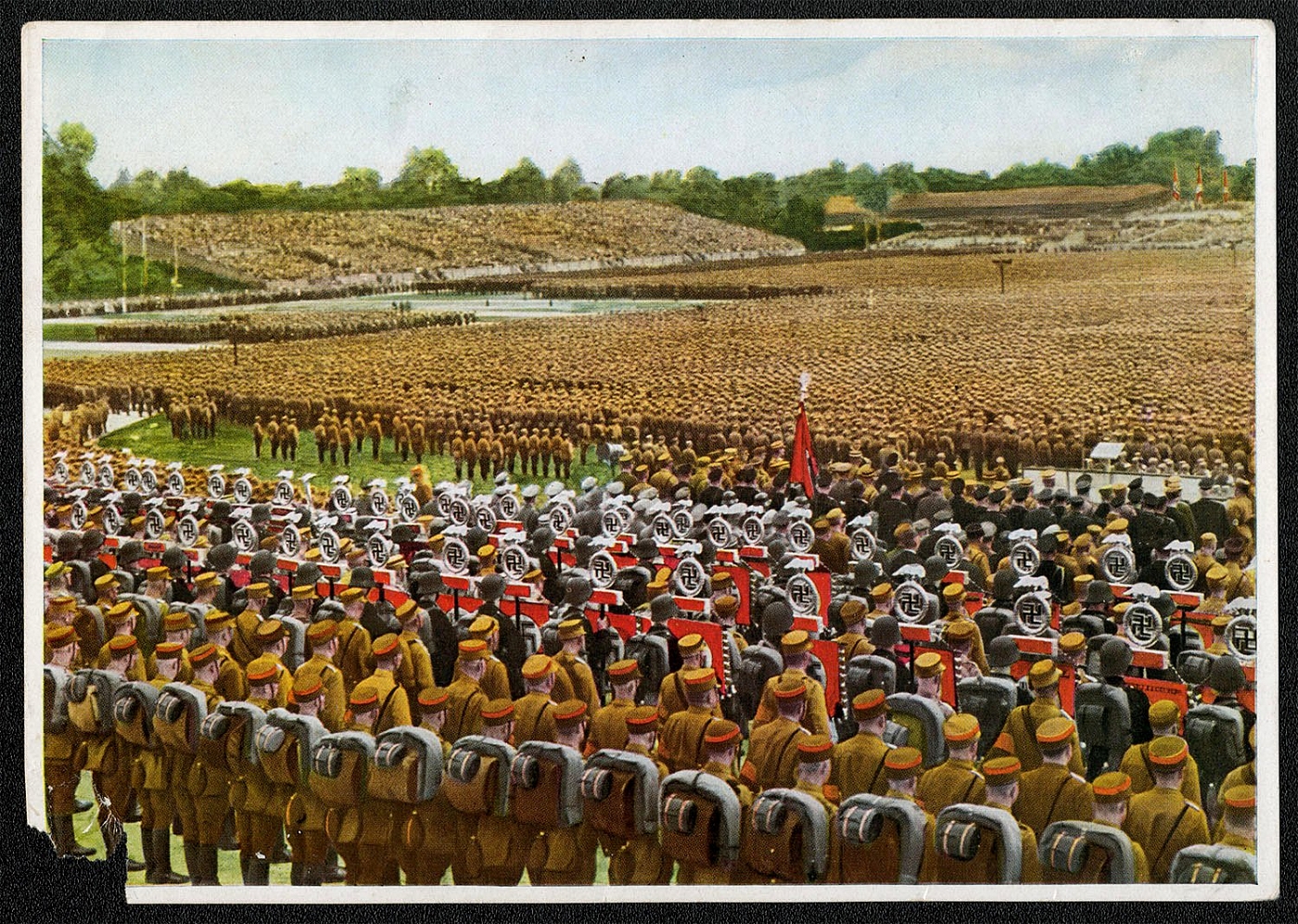
1933 The march out of the SA in Luitpoldhain NSDAP, Propaganda Card
Nurnberg 1933. The march out of the SA in Luitpoldhain. An audience estimated at 150,000 watched Hitler and Ernst Rohm, Chief of Staff of the SA salute at the wreath in front of the war memorial. This was followed by the flag consecration ceremony in which standards presented to the SA were “consecrated” by being touched with the Blut Fahne, the flag carried by Doctor Ingenieur Max Erwin von Schuebner-Richter in the Putsch of 9 November 1923 which was “ripped by the bullets of the opponents of the Party and hallowed by his blood as he fell in loyal faith in the resurrection of the German People.”
Sold for:
$12
762
$16
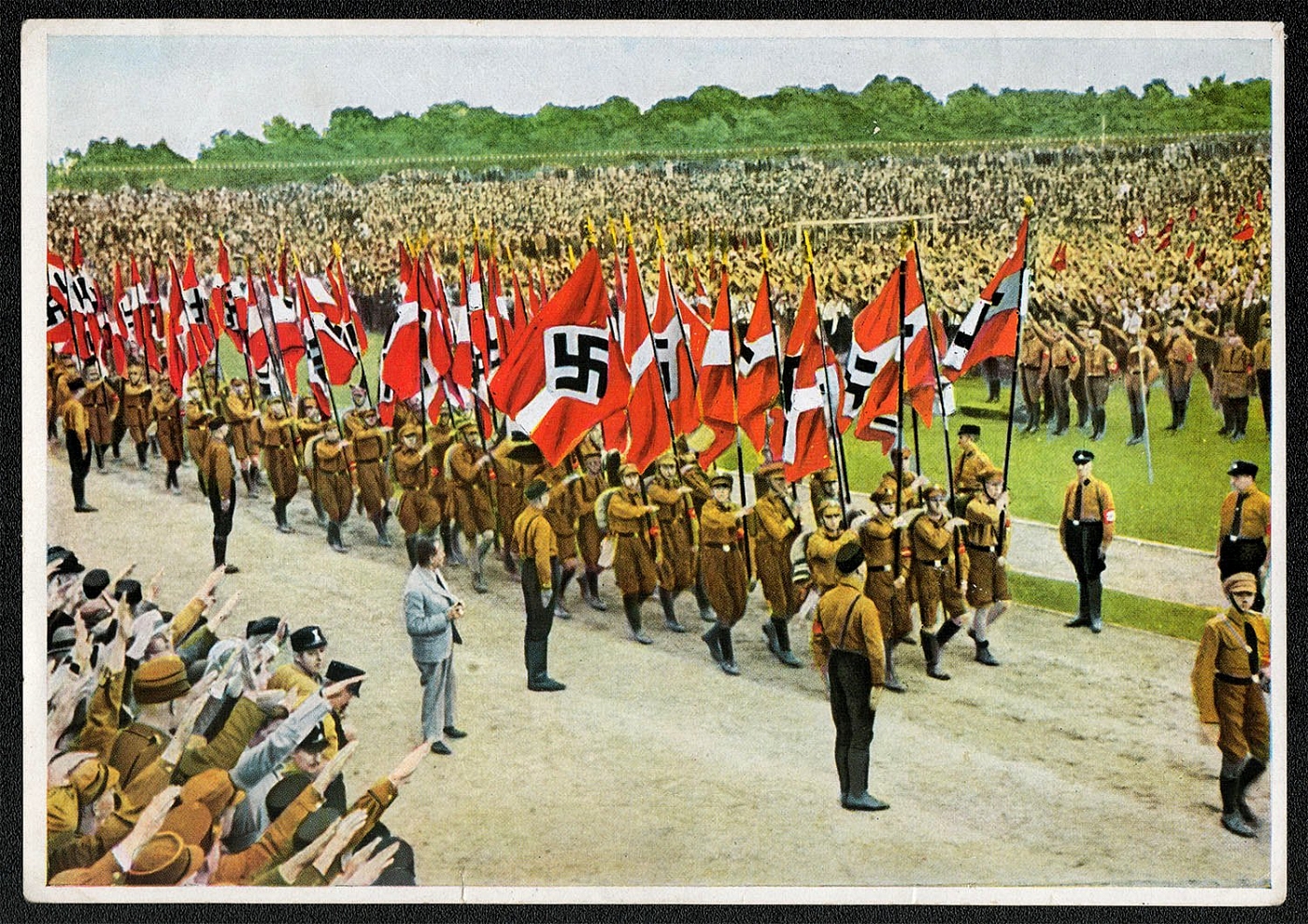
1933 Reichs Youth Day - Potsdam, Propaganda Card
Reichs Youth Day - Potsdam, 1932 Photo by Heinrich Hoffmann. “Though some of the roughnecks, veterans of street fighting and beerhouse brawls, opposed bringing women and children into the Nazi Party, Hitler soon provided organizations for them too. The Hitler Youth took in youngsters from fifteen to eighteen who had their own departments of culture, schools, press, propaganda, “defense sports,” etc., and those from ten to fifteen were enrolled in Deutsches Jungvolk. For the girls there was the Bund Deutscher Maedel and for the women the N.S. Frauenschaften. Students, teachers, civil servants, doctors, lawyers, jurists—all had their separate organizations, and there was a Nazi Kulturbund to attract the intellectuals and artists.”
Sold for:
$16
763
$35
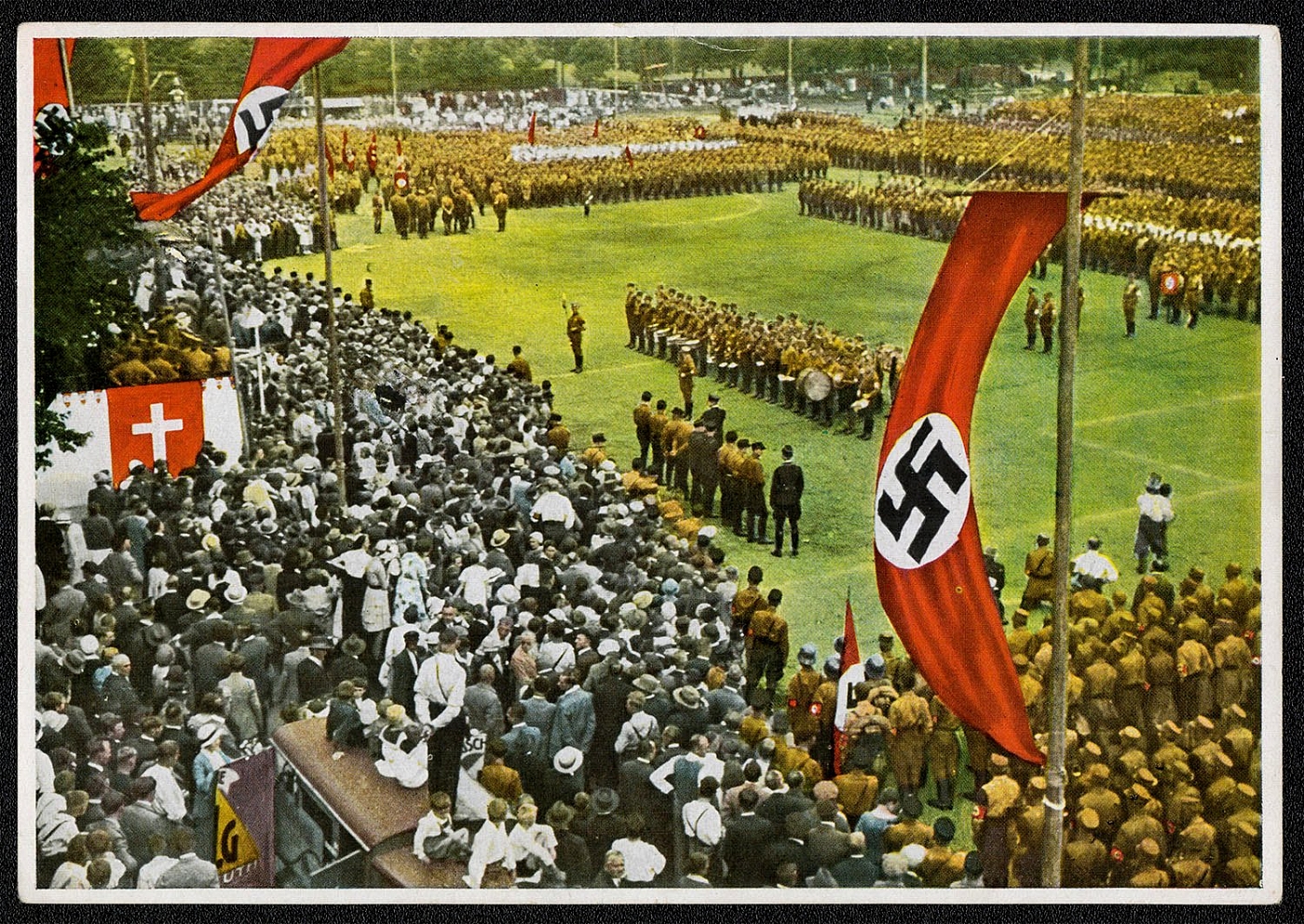
1933 Demonstration in Dresden at the Deutschlandflug Airport, Propaganda Card
Demonstration in Dresden at the Deutschlandflug Airport. Photo by Heinrich Hoffmann. “As the strife-ridden year of 1932 approached its end, Berlin was full of cabals, and cabals within cabals. Besides those of Vice-Chancellor Franz von Papen and General Schleicher, there was one at the President’s Palace, where Hindenburg’s son, Oskar, and his State Secretary, Meissner, held sway behind the throne. There was one at the Kaiserhof Hotel, where Hitler and the men around him were plotting not only for power, but against each other. Soon the webs of intrigue became so enmeshed, that by New Year’s, 1933, none of the cabalists was sure who was double-crossing whom. But it would not take long for them to find out.”
Sold for:
$35
764
$16
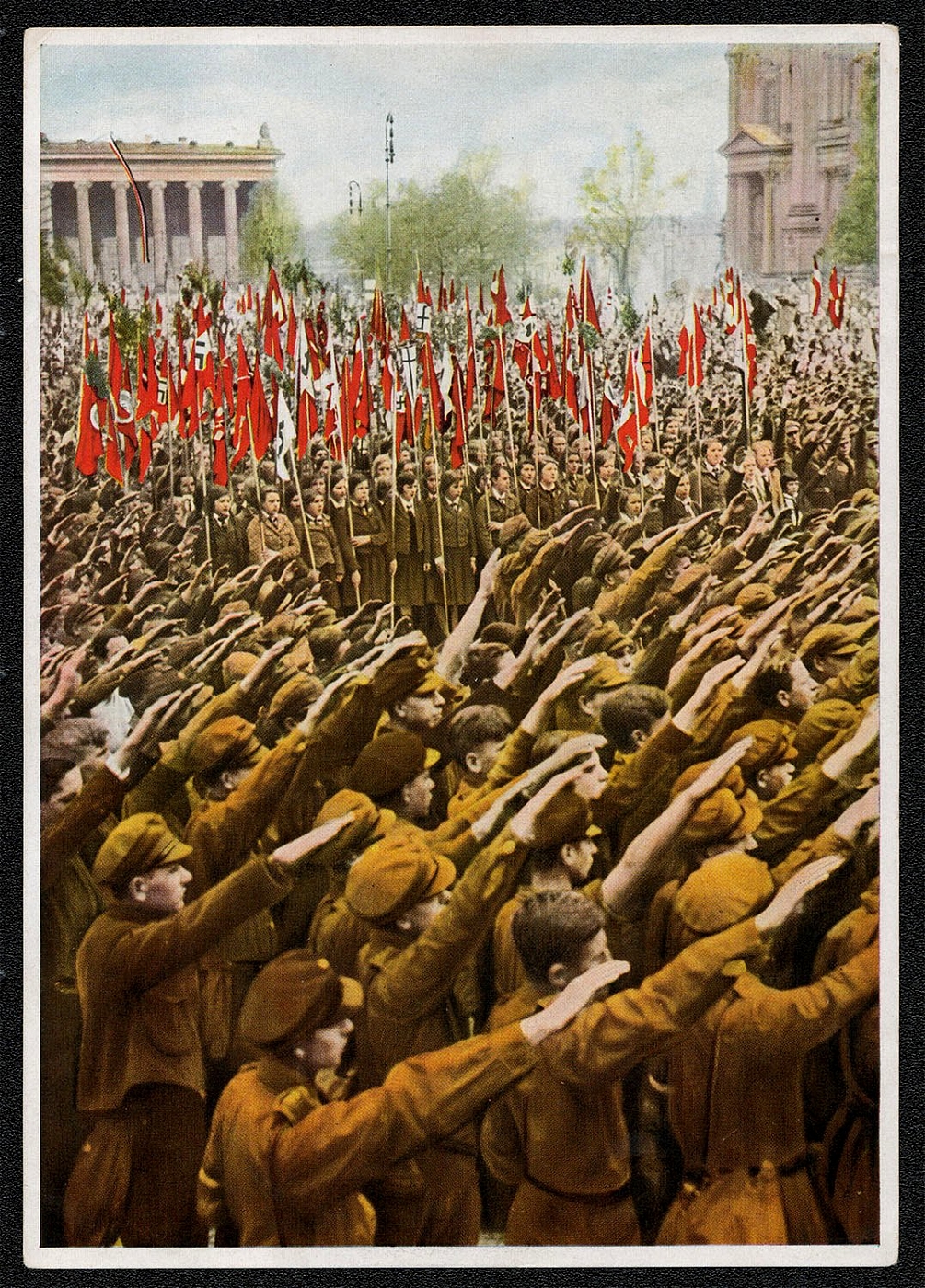
1933 The Hitler Youth at the Luftgarten, Propaganda Card
The Hitler Youth at the Luftgarten on 1. May 1933. Photo by Heinrich Hoffmann. “Large scale pro-labor propaganda staged in masterly fashion by Goebbels reached its climax on 1 May, the day of the international workers movement which was made an official public holiday for the first time (Day of National Labor).” Martin Broszat, The Hitler State
Sold for:
$16
765
$50
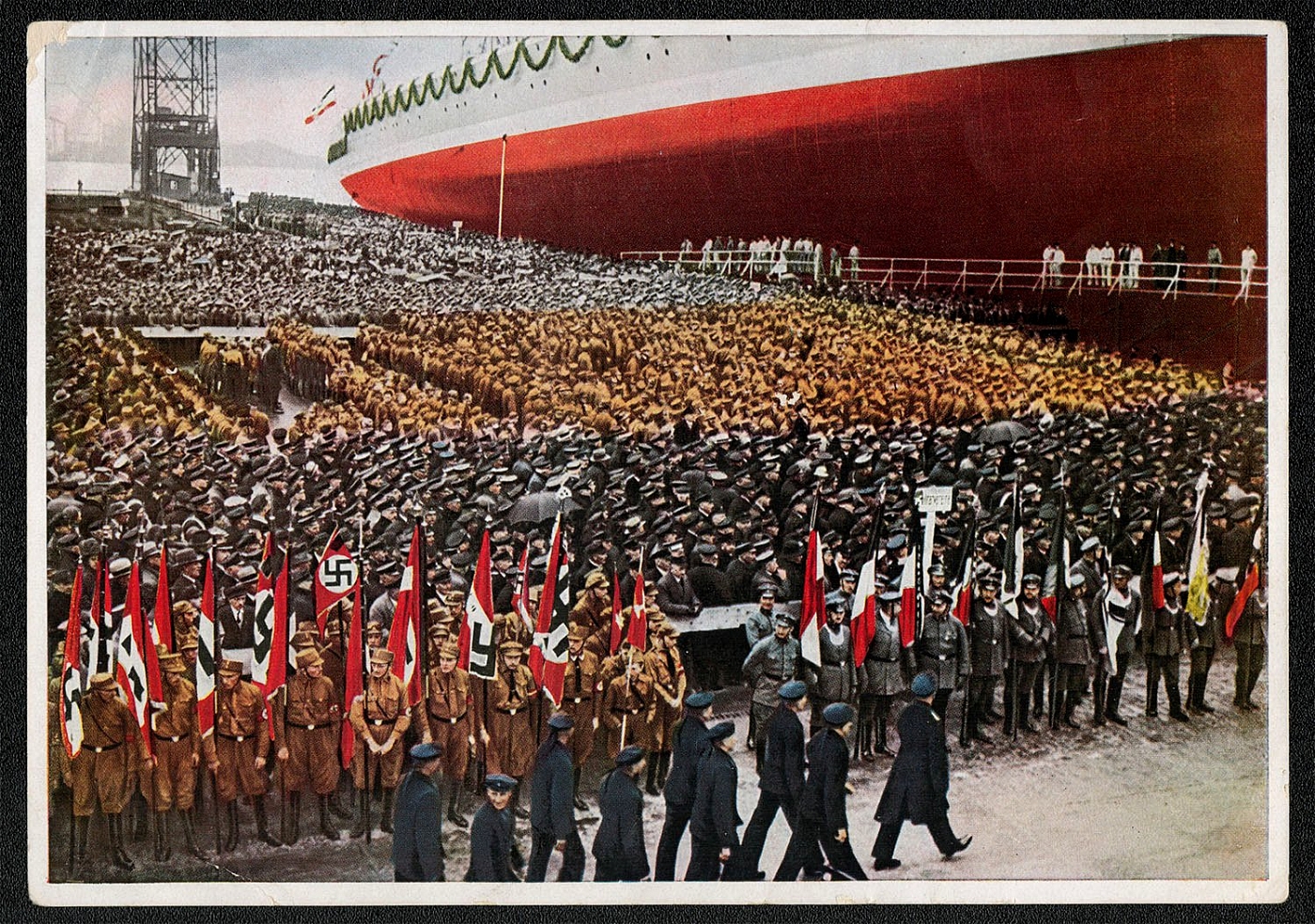
1933 The launching of the pocket battleship Admiral Scheer, Propaganda Card
The launching of the pocket battleship Admiral Scheer, 1933 The pocket-battleship concept was an ingenious response to a stringent clause in the Versailles treaty that limited future German warships to a displacement weight of a mere 10,000 tons. By contrast the Washington Naval Treaties of 1921 and 1922 allowed the world’s five leading sea powers—Great Britain, the United States, Japan, Italy, and France—to build battleships of up to 35,000 tons. Yet the Washington treaties offered the German navy a ray of hope by restricting the cruisers of the five powers to a 10,000-ton displacement and eight-inch guns. bigger weapons were allowed only if they could be considered experimental. The admirals in Berlin responded by drawing up plans for a 10,000-ton warship that would carry heavier guns than such cruisers while sacrificing nothing in the way of speed. The proposed vessel—the pocket battleship—would boast six 11-inch guns and eight 5.9-inchers. To keep its weight down, the ship would carry relatively light armor so that its eight diesel engines would give it twenty-six knots of speed—more than enough to elude rival battleships— and enormous range.
Sold for:
$50
766
$16
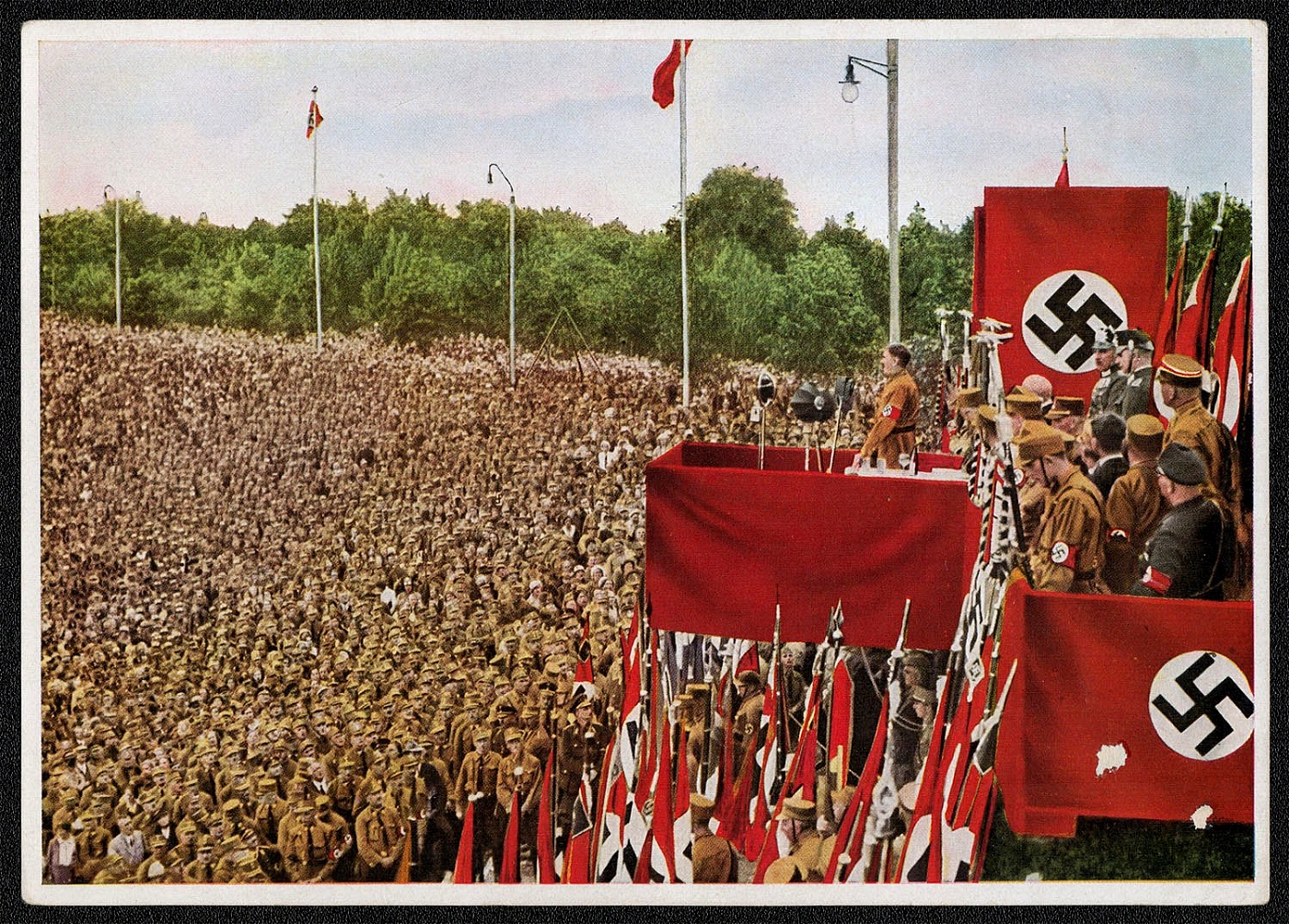
767
$30
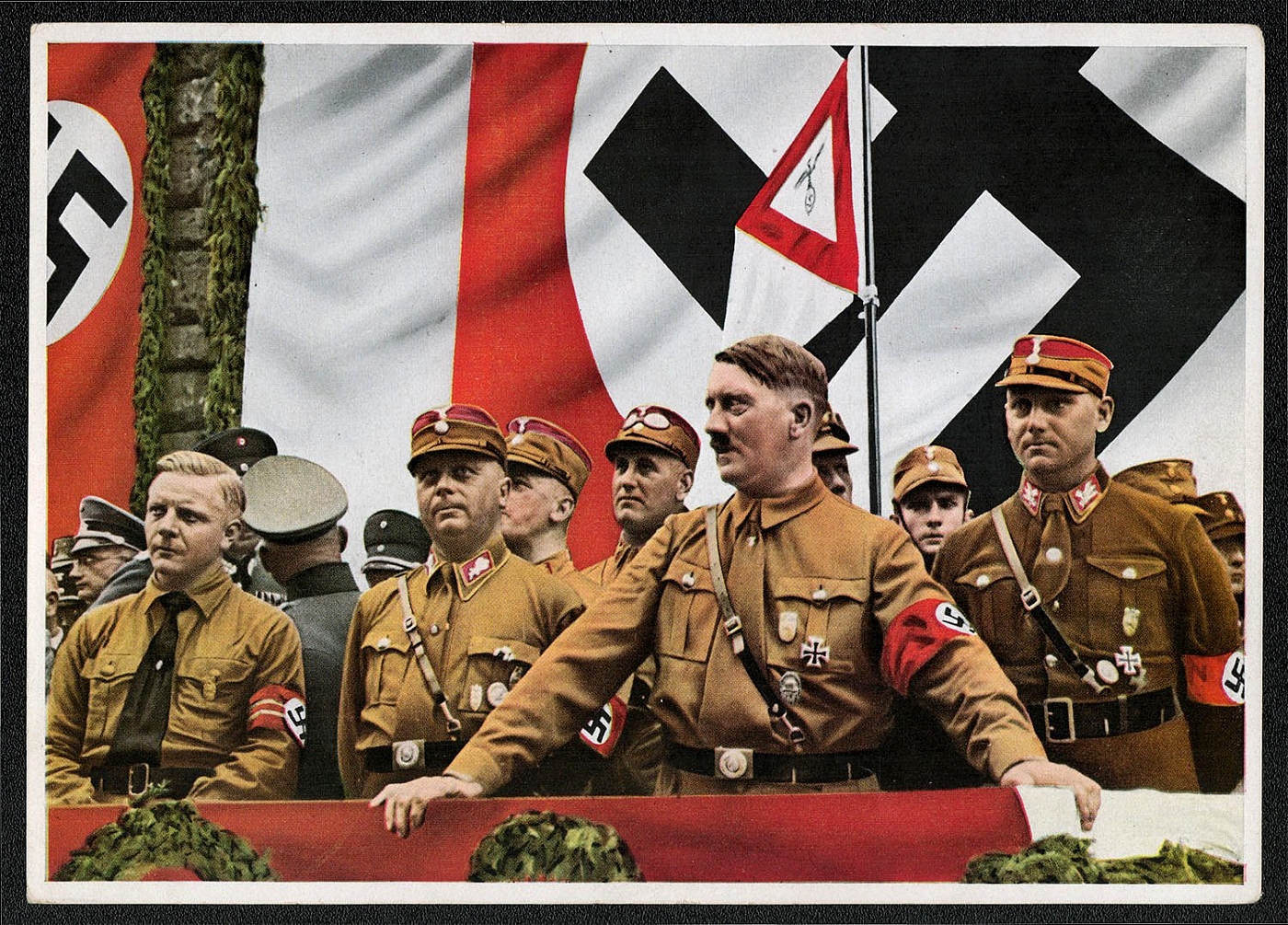
1933 Demonstration in Dortmund, 1933 Josef Wagner, Adolf Hitler, Wilhelm Schepmann and Victor Lutze, Propaganda Card
Demonstration in Dortmund, 1933 Josef Wagner, Adolf Hitler, Wilhelm Schepmann and Victor Lutze
Sold for:
$30
768
-
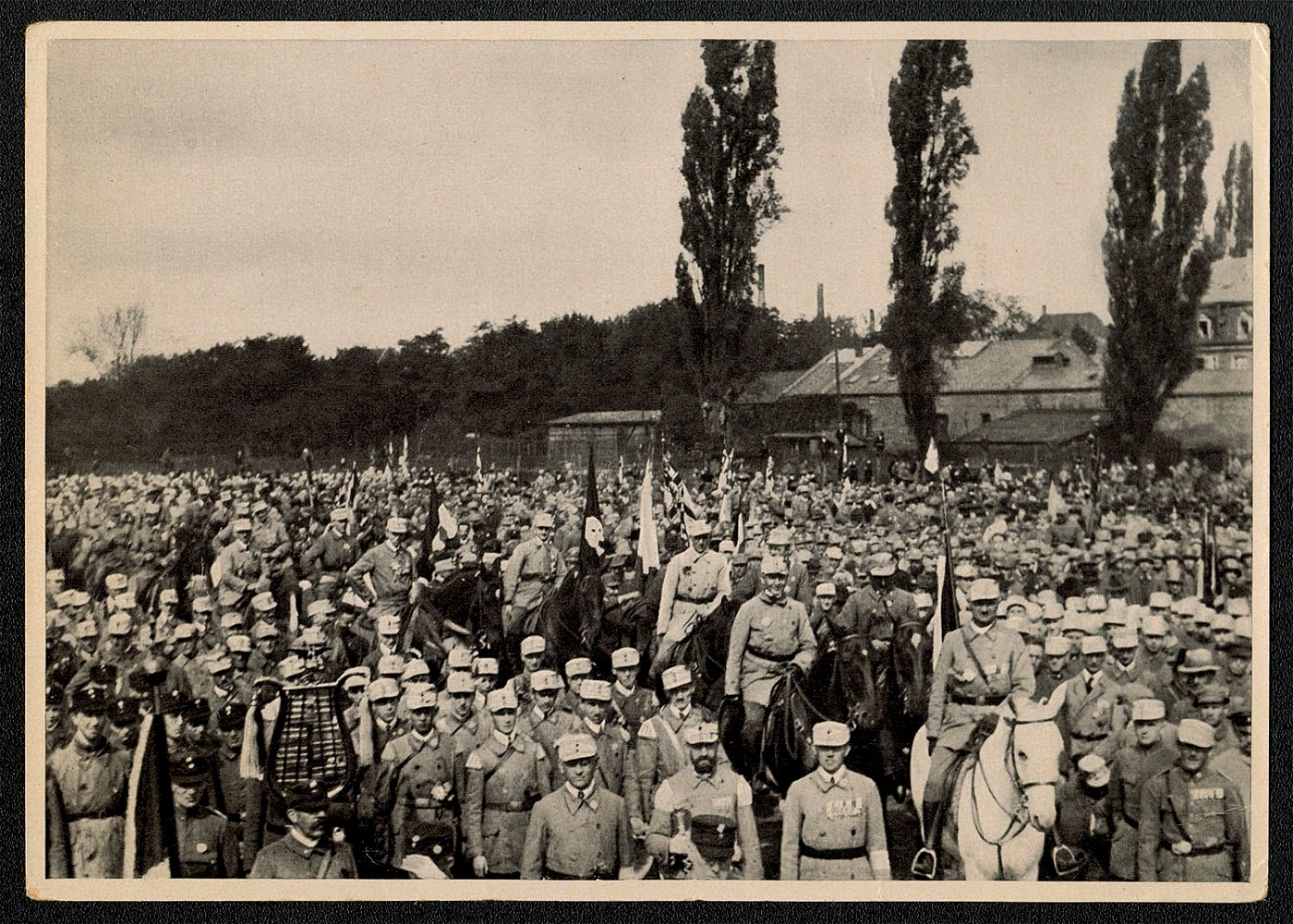
1933 Germany Day in Nuremberg 1923 NSDAP, Propaganda Card
At Germany Day in Nurnberg, 1923. The prototype of the later Nurnberg Party Days.) Photo by Heinrich Hoffmann Hitler characterized the party rallies of the 1920s as “erweiterte Generalmitgliederderversammlungen” (enlarged general assemblies of all members) or simply “Parteitage” (Party Days) in which not all of the country, but only Bavaria was represented. Actually, however, this is not entirely true of the first Party Day, because other parts of Germany and even foreign countries were represented.
Unsold
769
-
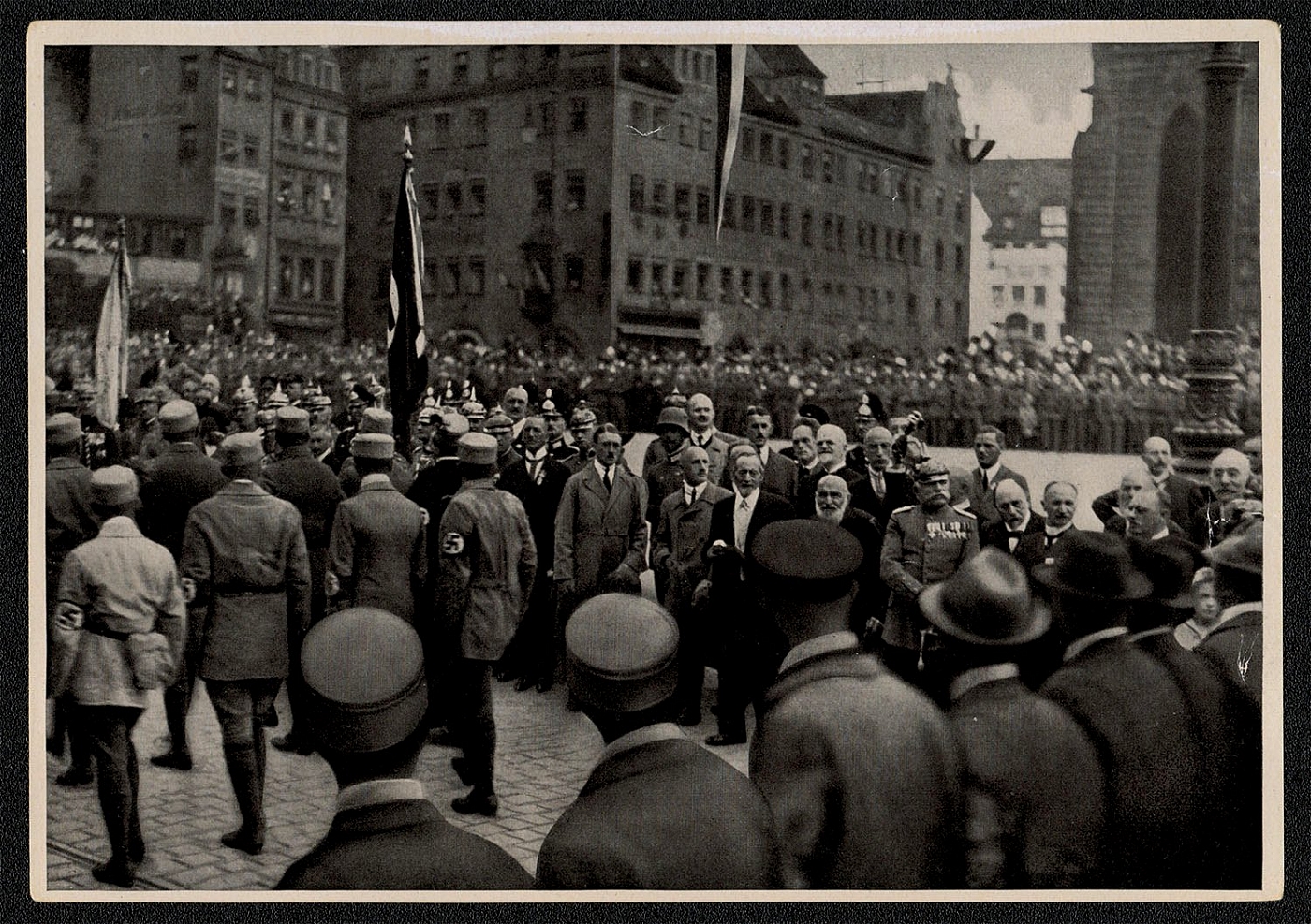
1933 Adolf Hitler and Field Marshal Erich Ludendorff reviewing the Sturmabteilung NSDAP, Propaganda Card
Adolf Hitler and Field Marshal Erich Ludendorff reviewing the Sturmabteilung at Germany Day in Nurnberg, 1923. (Photo by Heinrich Hoffmann) In September 1923 the nationalist factions proclaimed Deutschen Tag (Germany Day). Nurnberg was chosen for its location because of its association with German tradition. Adolf Hitler and his NSDAP were among those who took part. Impressed by the possibilities of the town as a backdrop for massed parades, he decided to hold all future NSDAP rallies in Nurnberg.
Unsold
770
-
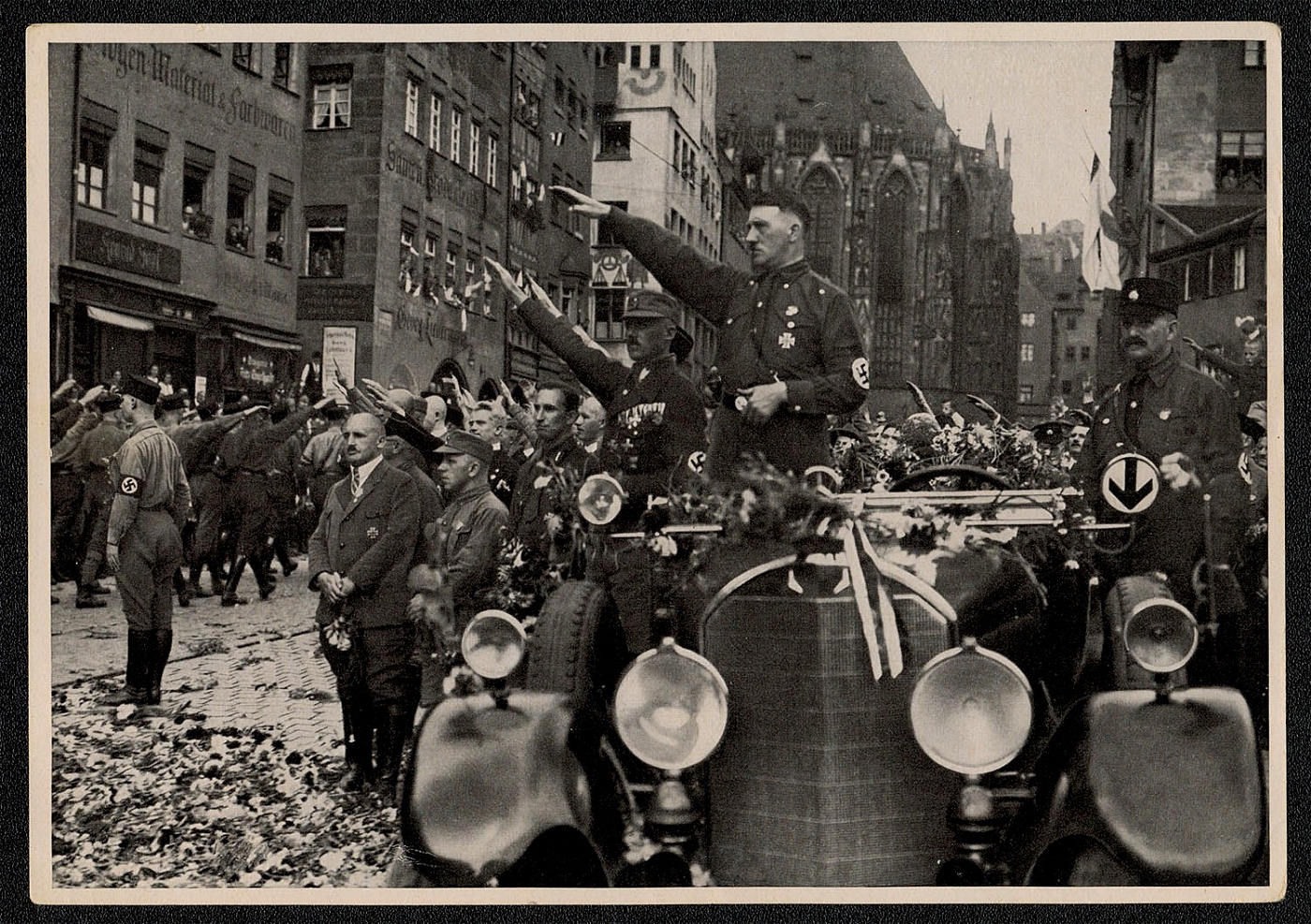
1933 The march of the Brown Army NSDAP, Propaganda Card
Тhе Third Party Day: Nurnberg 1929, and once more, the march of the Brown Army. (Photo by Heinrich Hoffmann) “The most serious problem of home policy remains that of the relation between the Federal Government and the various States. The States demand a greater measure of financial autonomy. on the other hand, a strong section of public opinion is in favour of further development of Federal institutions at the expense of the States.”
Unsold
771
$10
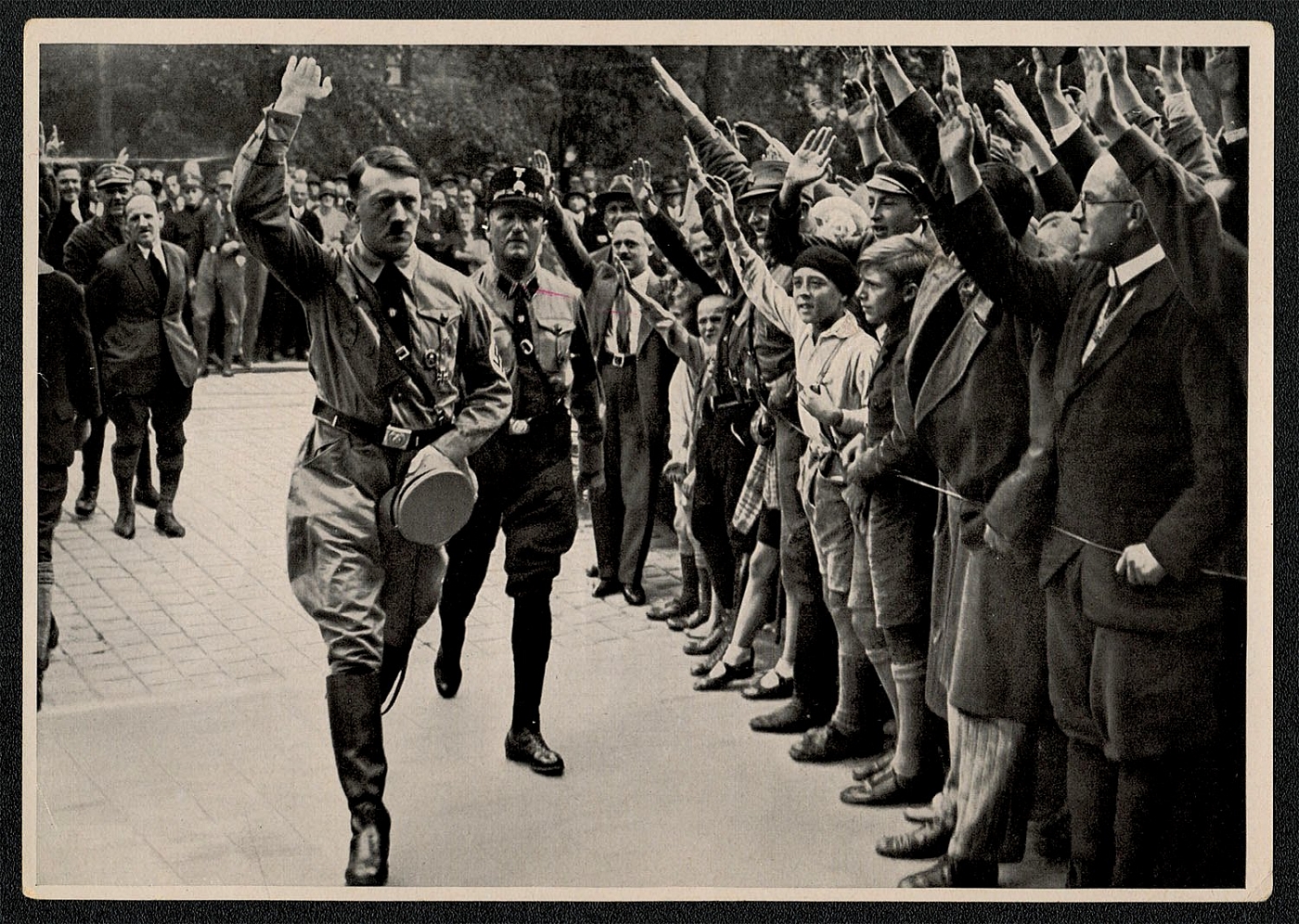
1933 The gifted Fuhrer at the Congress NSDAP, Propaganda Card
The Fourth Party Day: Nurnberg, 1929. The gifted Fuhrer at the Congress Photo by Heinrich Hoffmann) The “Party Day of Consolidation” held in 1929 was the first truly spectacular Rally. The consecration of SA and SS standards took place on the steps of the newly constructed war memorial on the Luitpoldhain with 60,000 men and 2,000 Hitler Youth participating. The march past took four hours. At another event, in which 150.000 spectators were present, “Deutschland uber Alles” was played at 8 o’clock and runners entered and surrounded the arena carrying blazing torches. The bands played pieces by Beethoven and Wagner, and at the climax, the torches were simultaneously extinguished and floodlights switched on, causing the crowd to roar with approval. A huge fireworks display followed Hitler’s speech. “In Germany, as in all Capitalist countries, there is great antagonism between the propertied classes and the workers. but the population is also divided by religious differences.”
Sold for:
$10
772
$10
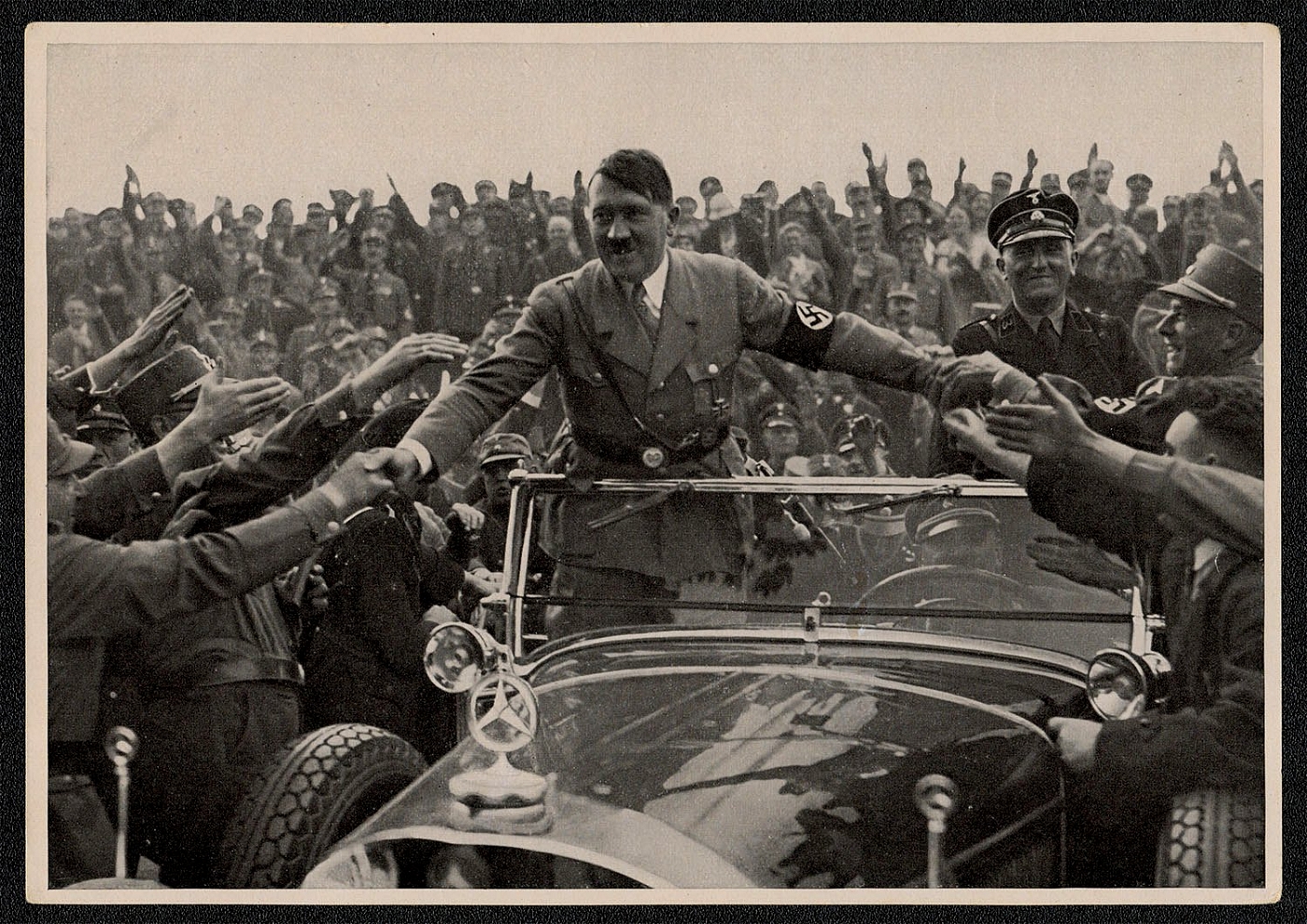
1933 The Fuhrer and his faithful NSDAP, Propaganda Card
"The Fuhrer and his faithful, Nurnberg, 1933. The 5th Party Rally was held 1-3 September 1933. It was the first major national gathering after the NSDAP gained power. The name, Parteitag des Sieges (Party Day of Victory) was suggested by Rudolf Hess. Hitler arrived at the Deutscher Hof on 31 August and at a reception given by Mayor Willy Liebel who presented him with an original engraving by Durer “ Ritter, Tod und Teufel"" (Knight, Death and Devil). It was a most appropriate gift. “The energy which the National Socialist leaders devoted to the ending of unemployment from the summer of 1933 (Hitler described it at the NSDAP Party Congress in Nurnberg on 31 August 1933 as the Party’s most important task), the wave of public proclamations, actions, and collections of donations (regarded by many concerns as enforced) to create and finance new jobs which now got underway with much use of National Socialist propaganda and organization, and the official appeals for readiness to make sacrifices to help the unemployed and needy before the winter of 1933/34 had a twofold object: It gave the Party a new preoccupation, diverting it, in part at least, from the struggle for political power and directing it towards serving the aims of the state leadership.”"
Sold for:
$10
773
-
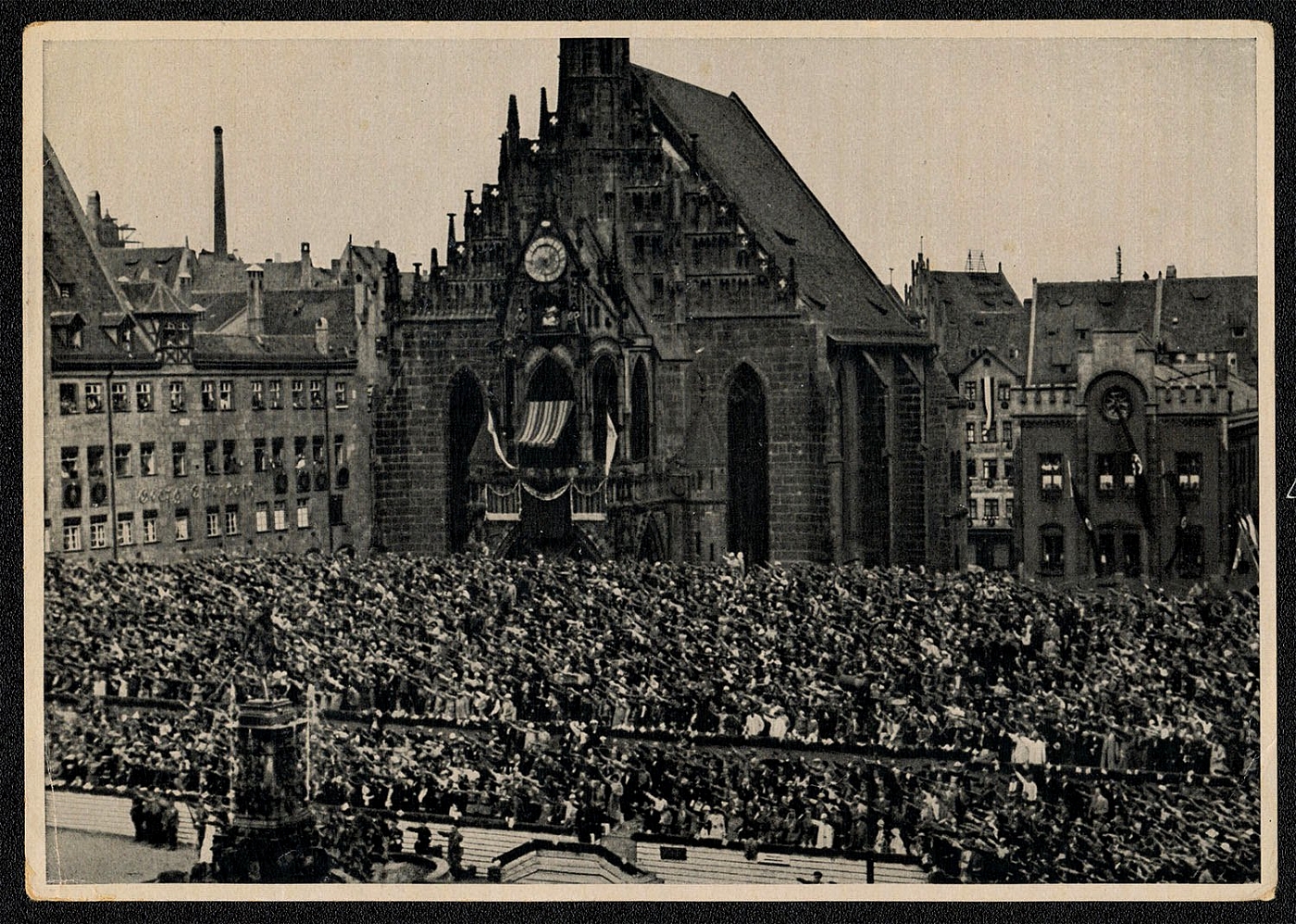
1933 The Festival Grandstand in front of the Frauenkirche NSDAP, Propaganda Card
The Festival Grandstand in front of the Frauenkirche during the 1933 Party Rally in Nurnberg. (Photo by Heinrich Hoffmann) Starting in 1933, the Nurnberg rallies were to rise to extreme importance in the life of the nation. they were to develop slowly into a national institution. The main emphasis of the 1933 rally lay in the celebration of the Party’s victory over democracy.
Unsold
774
-
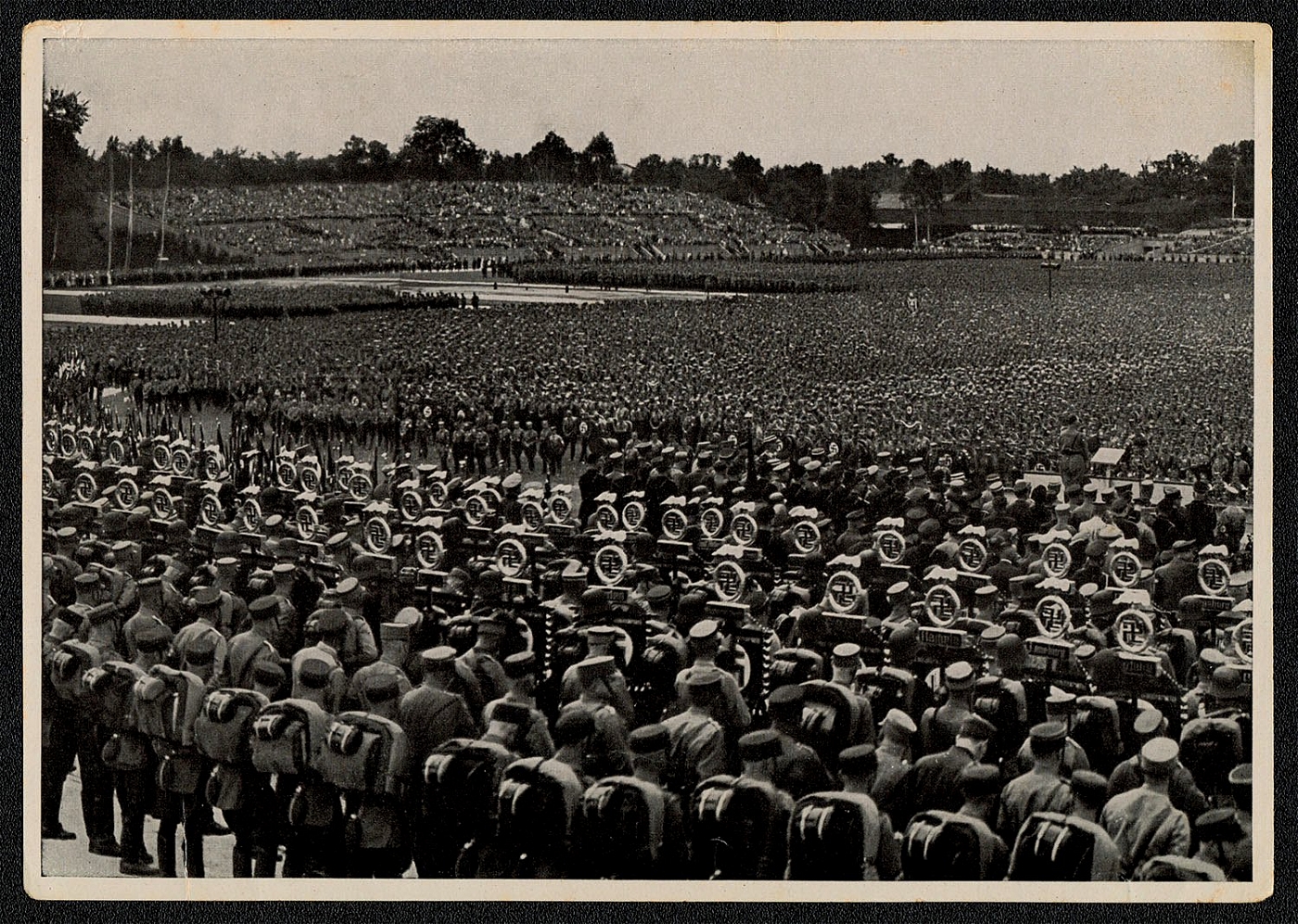
1933 The march out of the SA in Luitpoldhain NSDAP, Propaganda Card
Nurnberg 1933. The march out of the SA in Luitpoldhain. At first glance it would appear that this black and white card (Bild Nr. 221 from the “cigarette card” album ) is the same as that to the left. Closer scrutiny, however, will show that the photo above was taken several minutes later as the SA men in the foreground are “at ease,” and the throng in the background are leaving the field.
Unsold
775
-
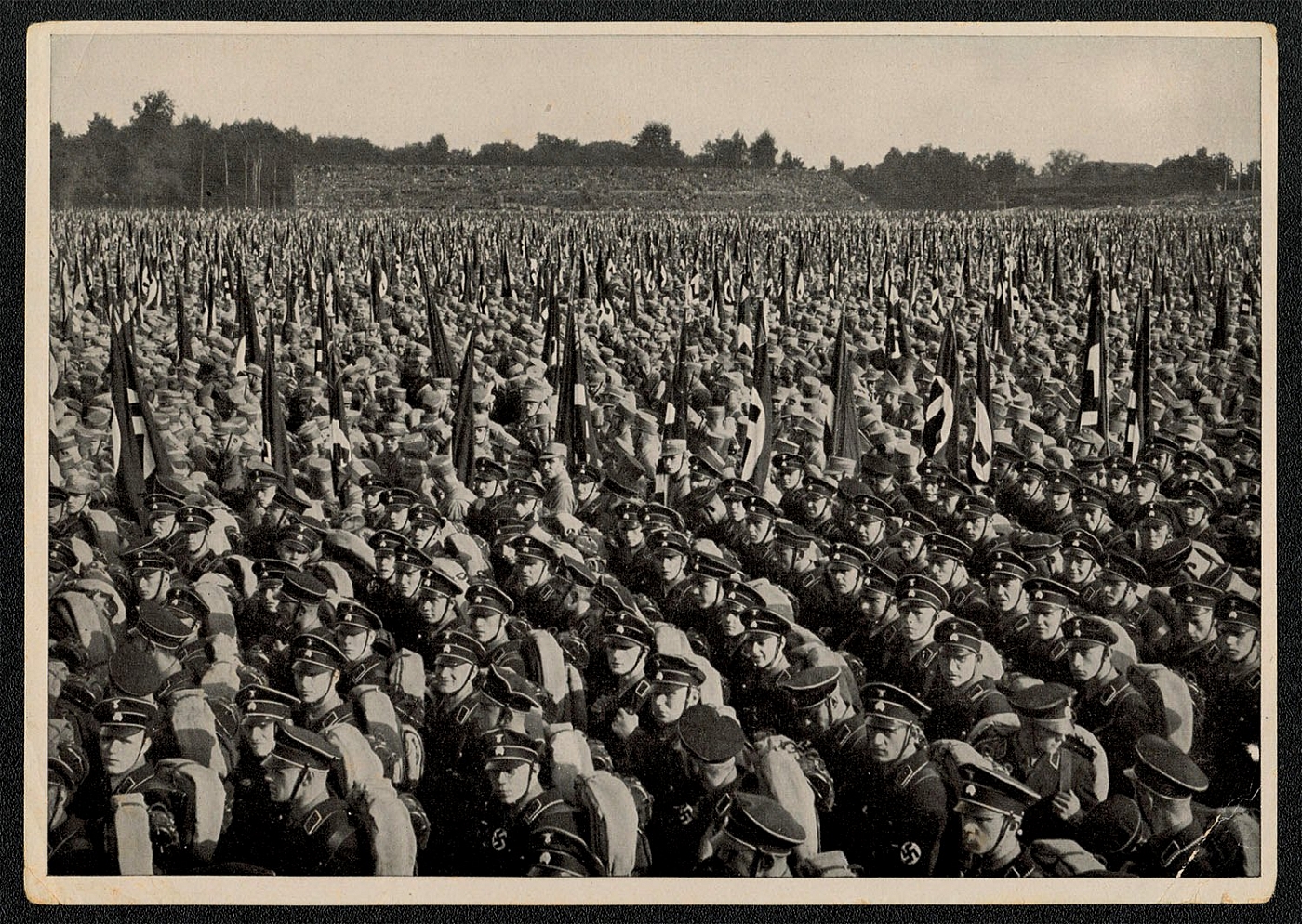
1933 One Hundred Thousand SA and SS men at Party Day, Propaganda Card
One Hundred Thousand SA and SS men at Party Day, Nurnberg 1933. Numbering about 10,000 at the end of 1929, the SS only assumed rapidly growing importance with the appointment of Heinrich Himmler as the new Reichsfiihrer-SS (6 January 1929). Servile, but exceptionally industrious and eager, Himmler, who had been particularly devoted to the volkisch agrarian ideology of the race, blood and soil theory, methodically went about transforming the bodyguard’s old code of honor to a specifically SS order and elitist ideal and issued strict conditions of enlistment and service for the SS. The more rapidly the SA became a brown mass army with a marked proletarian strain after the flood of new members from 1929-30, the more the ‘black’ SS filled the role of the Party elite, which now attracted former officers, failed academics or the nobility.
Unsold
776
-
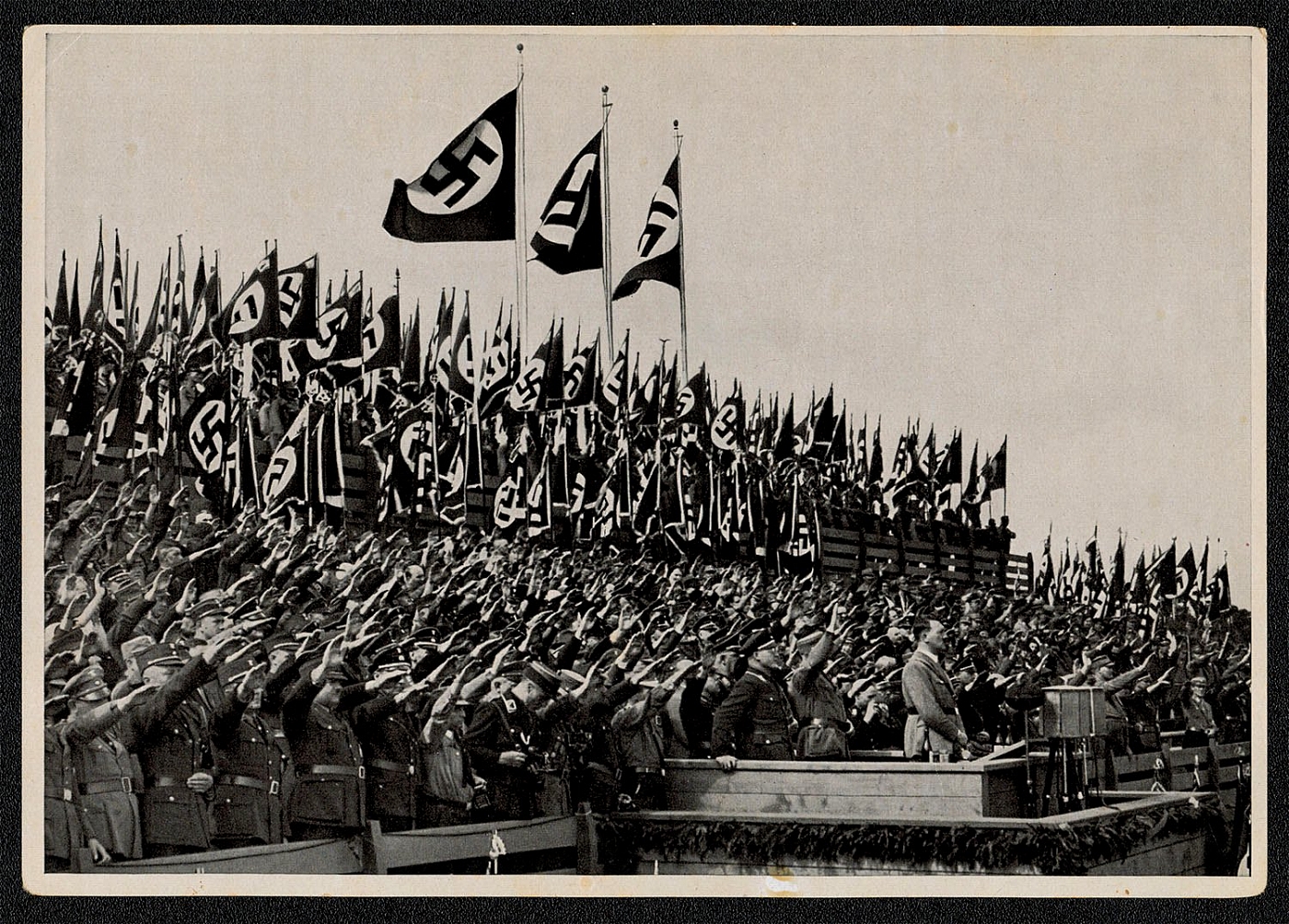
1933 151,000 civil servants hear the Fuhrer’s speech at the Party Rally, Propaganda Card
151,000 civil servants hear the Fuhrer’s speech at the Party Rally, Nurnberg 1933. The Parteitag des Sieges (Party Day of Victory), 1-3 September 1933. § The most noticeable civil service policy among the majority of the ‘old fighters’ and NSDAP functionaries started from a basic distrust. The traditionally strong cohesion of the civil service, its bureaucratic homogeneity on the basis of similar education and origin, the selection procedures for filling administrative posts and overwhelmingly conservative attitude was seen as a ‘state within a state’ opposed to the National Socialist claim to leadership. As a result, the main effort was to set up a system of control to exert permanent pressure on civil servants by infiltrating the bureaucracy with reliable National Socialists, and by Party consultation in the matter of civil service appointments.
Unsold
777
$10
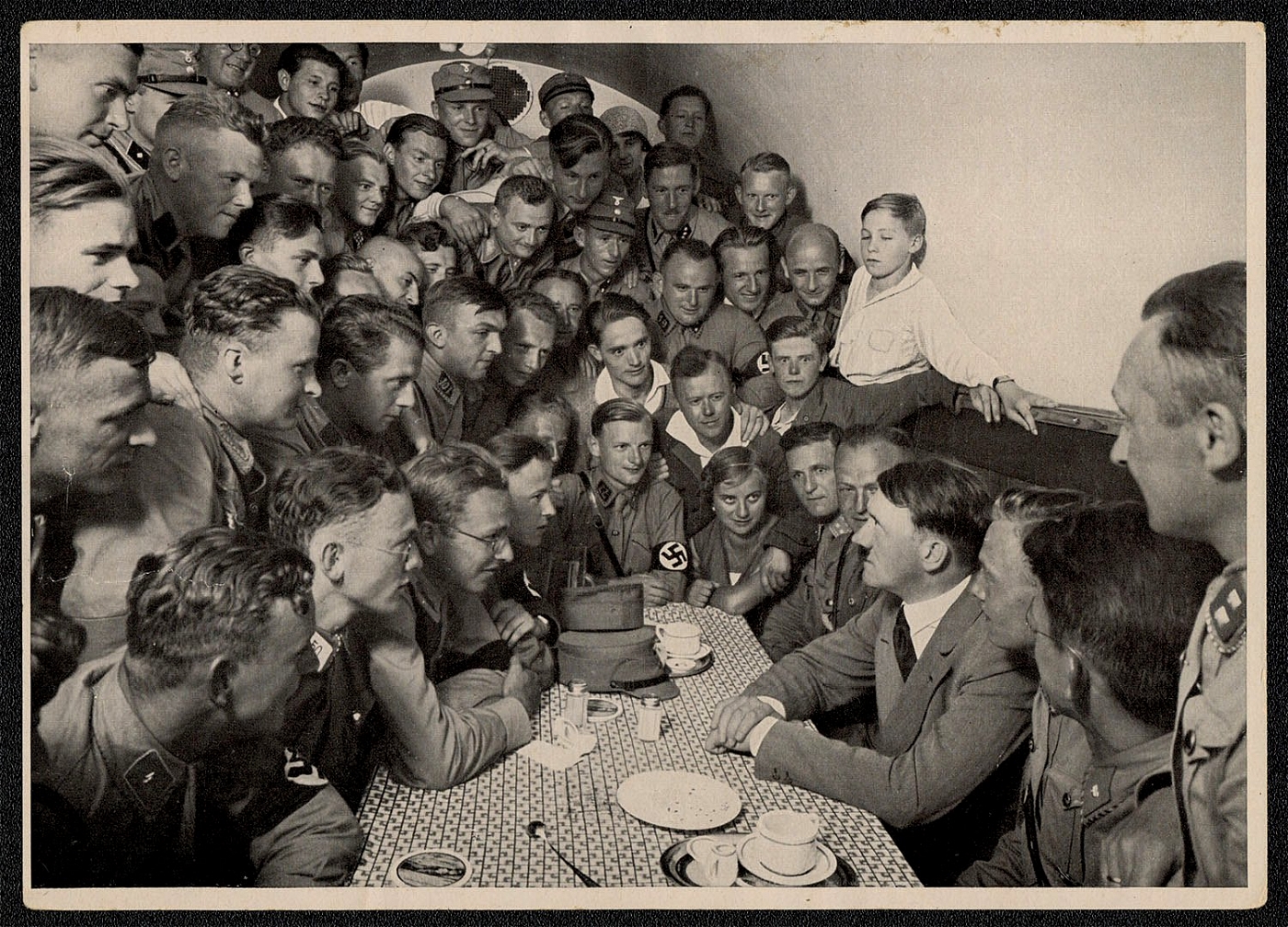
1933 The Brown House in Munich is the goal of many of the SS men of the Reich. In the Officers Mess with the Fuhre, Propaganda Card
The Brown House in Munchen is the goal of many of the SS men of the Reich. In the Officers Mess with the Fuhrer. Photo by Heinrich Hoffmann. In 1931 the Party’s national headquarters in Munich moved from the office in Schellingstrasse to the “Brown House,” a palatial building converted from the Barlow Palace near Konigsplatz by Hitler’s architect, Professor Troost. “One got the impression that here indeed were the offices of a state within a state. That, no doubt, was the impression Hitler wished to convey, for it helped to undermine confidence, both domestic and foreign, in the actual German State which he was trying to overthrow.”
Sold for:
$10
778
-
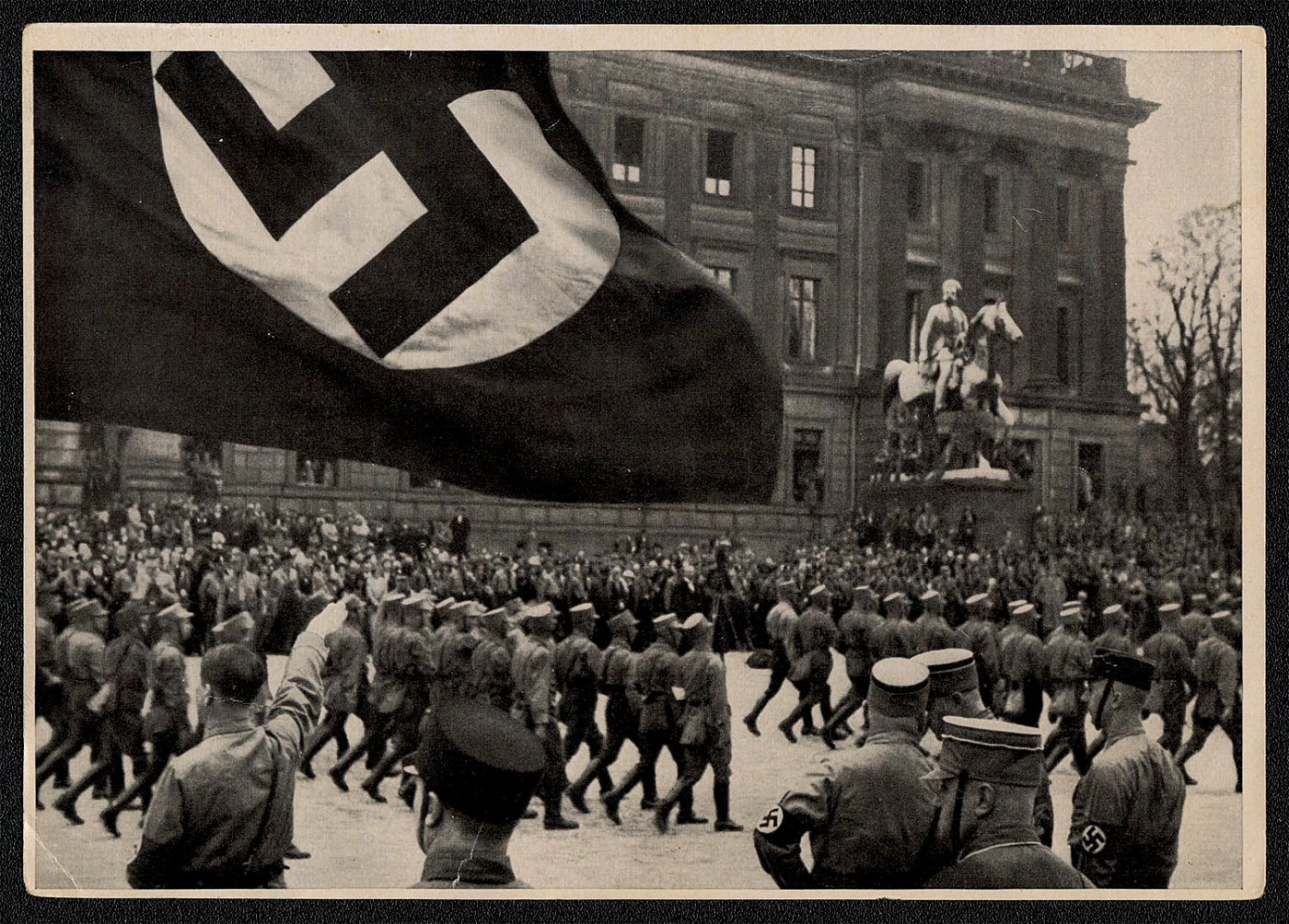
1933 Marching out in Braunschweig, Propaganda Card
Marching out in Braunschweig, 1931 “ . . . the population is also divided by religious differences, and by the conflict between the partisans of national unity and those who favour the maintenance of the political individuality of different parts of the German federation, a conflict which is a constant feature of German history. It is this problem which gives rise to the peculiar difficulties with which Germany is confronted in the development of organic political life.”
Unsold
779
-
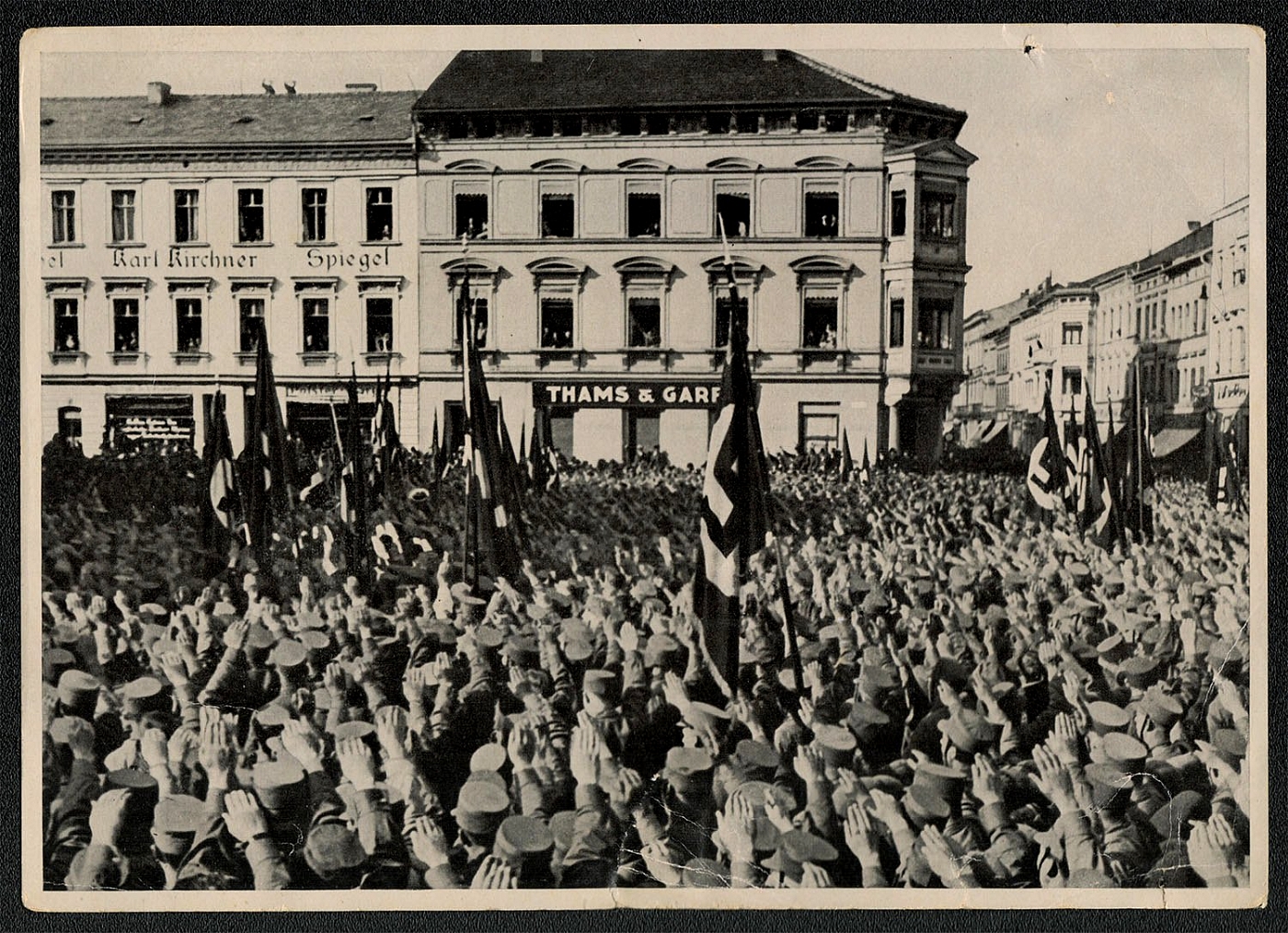
1933 The people are awakening everywhere. Marching out in Meiningen, Propaganda Card
The people are awakening everywhere. Marching out in Meiningen, 1931 “On October 10, 1931 Hitler was received by President Hindenburg for the first. General Kurt von Schleicher had made the appointment. Earlier that autumn he had conferred with Hitler and arranged for him to see both the Chancellor and the President. In the back of his mind was the question of what to do when Hindenburg’s seven-year term of office came to an end in the spring of 1932. The Field Marshal would be eighty-five then, and the periods when his mind was lucid were diminishing. Still, as everyone realized, if he were not a candidate to succeed himself, Hitler, though he was not legally a German citizen, might contrive to become one, run for the office, win the election and become President.
Unsold
780
$12
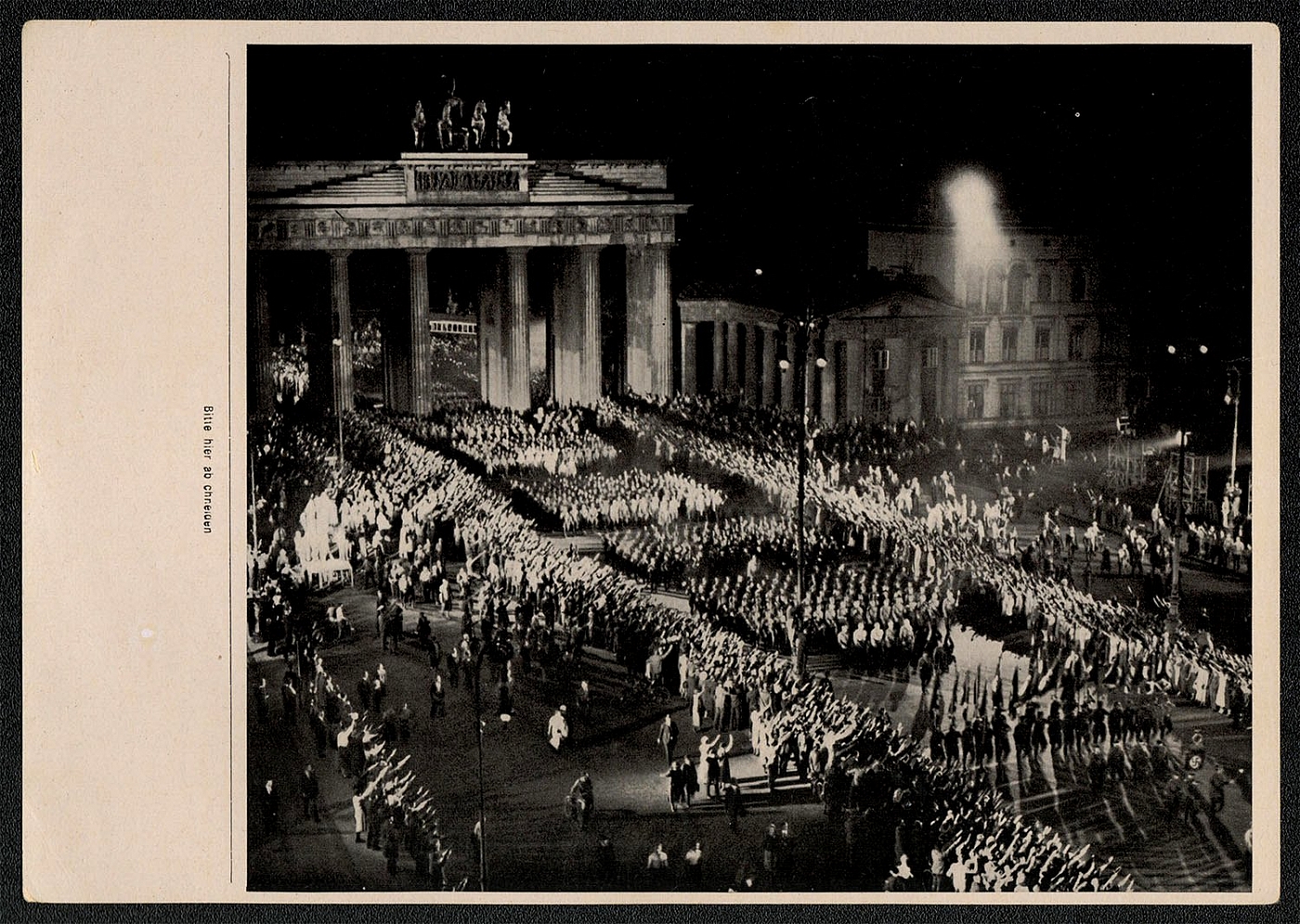
1933 The SA marches through Brandenburg Gate, Propaganda Card
The SA marches through Brandenburg Gate. Photo by Heinrich Hoffmann. “The Hohenzollern Empire had been built on the armed triumphs of Prussia, the German Republic on the defeat by the Allies after a great war. But the Third Reich owed nothing to the fortunes of war or to foreign influence. It was inaugurated in peacetime, and peacefully, by the Germans themselves, out of both their weaknesses and their strengths. The Germans imposed the Nazi tyranny on themselves. Many of them, perhaps a majority, did not quite realize it at that noon hour of January 30, 1933 when President Hindenburg, acting in a perfectly constitutional manner, entrusted the chancellorship to Adolf Hitler.”
Sold for:
$12
781
-
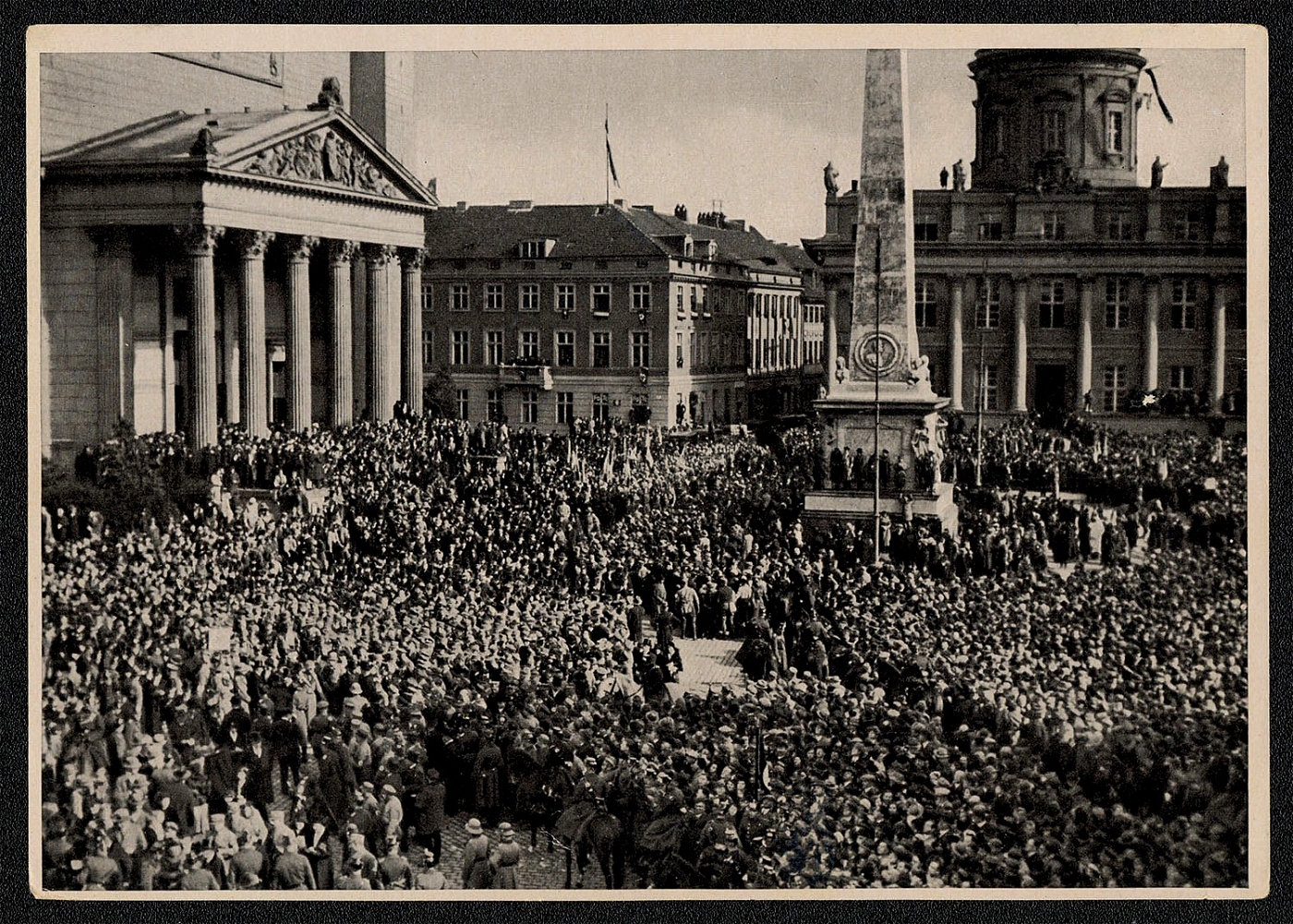
1933 One hundred thousand gather at Potsdam, Propaganda Card
One hundred thousand gather at Potsdam on 21 March 1933 for the state ceremony. “Hitler wished to make a grandiose gesture to the aged Field Marshal and to the Army and the nationalist conservatives as well, and in so doing link his rowdy, revolutionary regime with Hindenburg’s venerable name and with all the past military glories of Prussia. To accomplish this he and Goebbels, who on March 13 became Minister of Propaganda, conceived a master stroke. Hitler would open the new Reichstag, which he was about to destroy, in the Garrison Church at Potsdam the great shrine of Prussianism, which aroused in so many Germans memories of imperial glories and grandeur, for here lay buried the bones of Frederick the Great, here the Hohenzollern kings had worshiped, here Hindenburg had first come in 1866 on a pilgrimage when he returned as a young Guards officer from the Austro-Prussian War, a war which had given Germany its first unification.”
Unsold
782
-
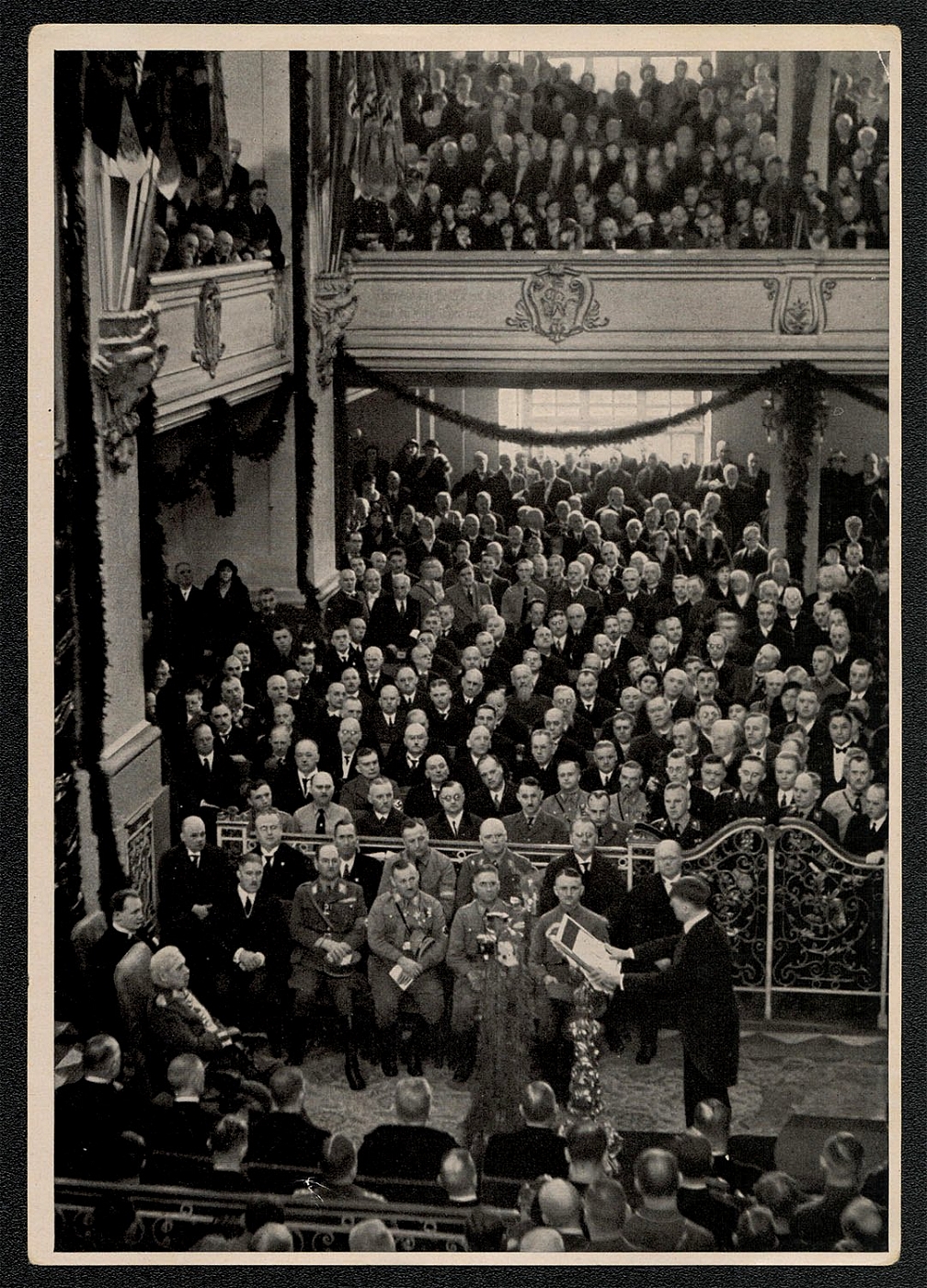
1933 The state ceremony at Potsdam, Propaganda Card
“We are willing to give the people peace.” The state ceremony at Potsdam, 21 March 1933. “The NSDAP made no secret of the fact that the Reichstag was to have only one task - passing a law of four years duration empowering the government to take legal measures, including constitutional changes, to ‘relieve the distress of the people of Reich’ on its own authority.” Martin Broszat, The Hitler State
Unsold
783
-
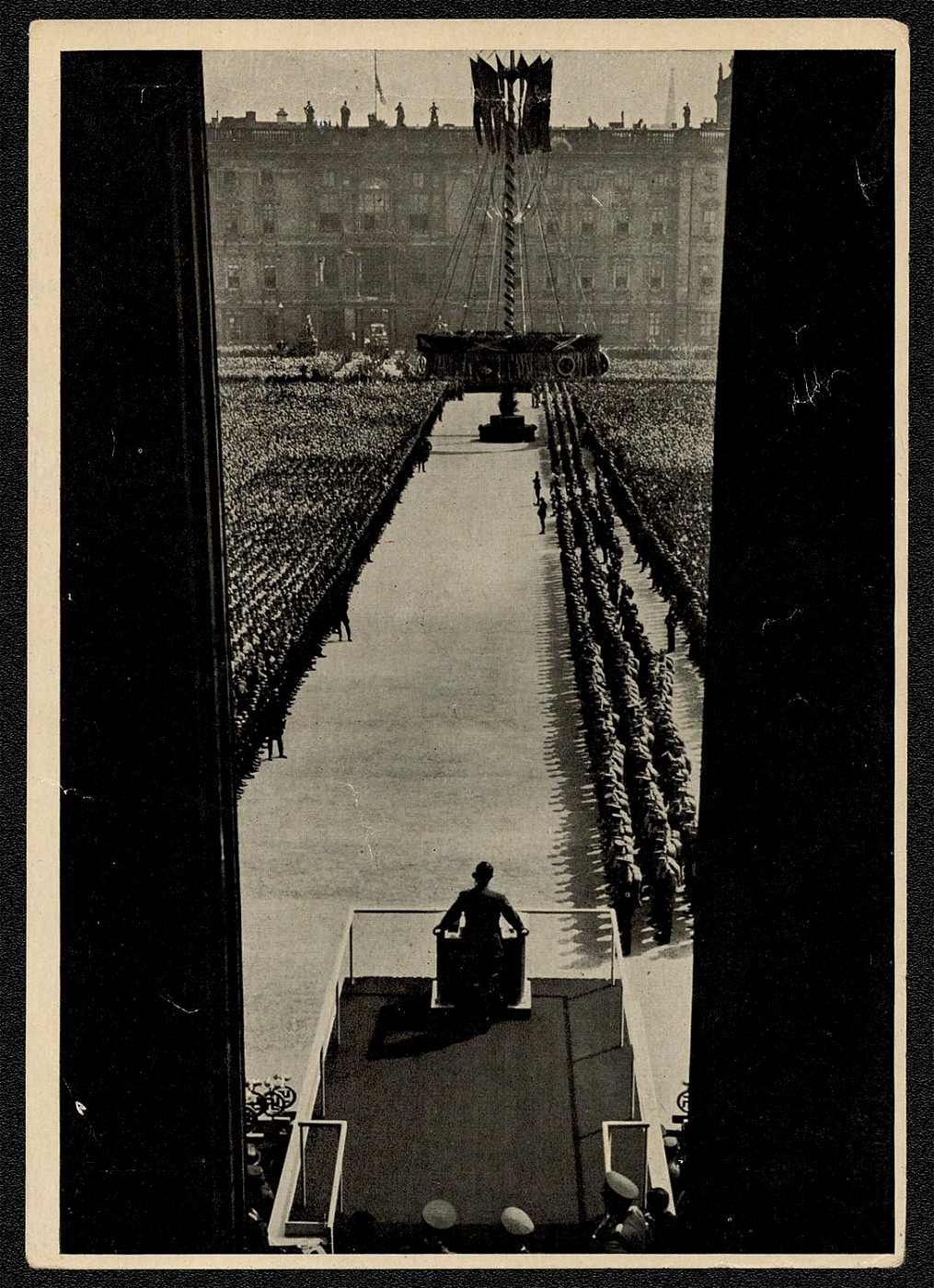
1933 The Fuhrer speaks to the German people, Propaganda Card
The Fuhrer speaks to the German people, 1. May 1933. “In front of about a million people Hitler spoke reprovingly on the Templehof Field in Berlin about pride of place, the mistaken underestimation of manual labor and the ‘criminal’ Marxist device of social ‘fratricidal conflict’.” Martin Broszat, The Hitler State
Unsold
784
-
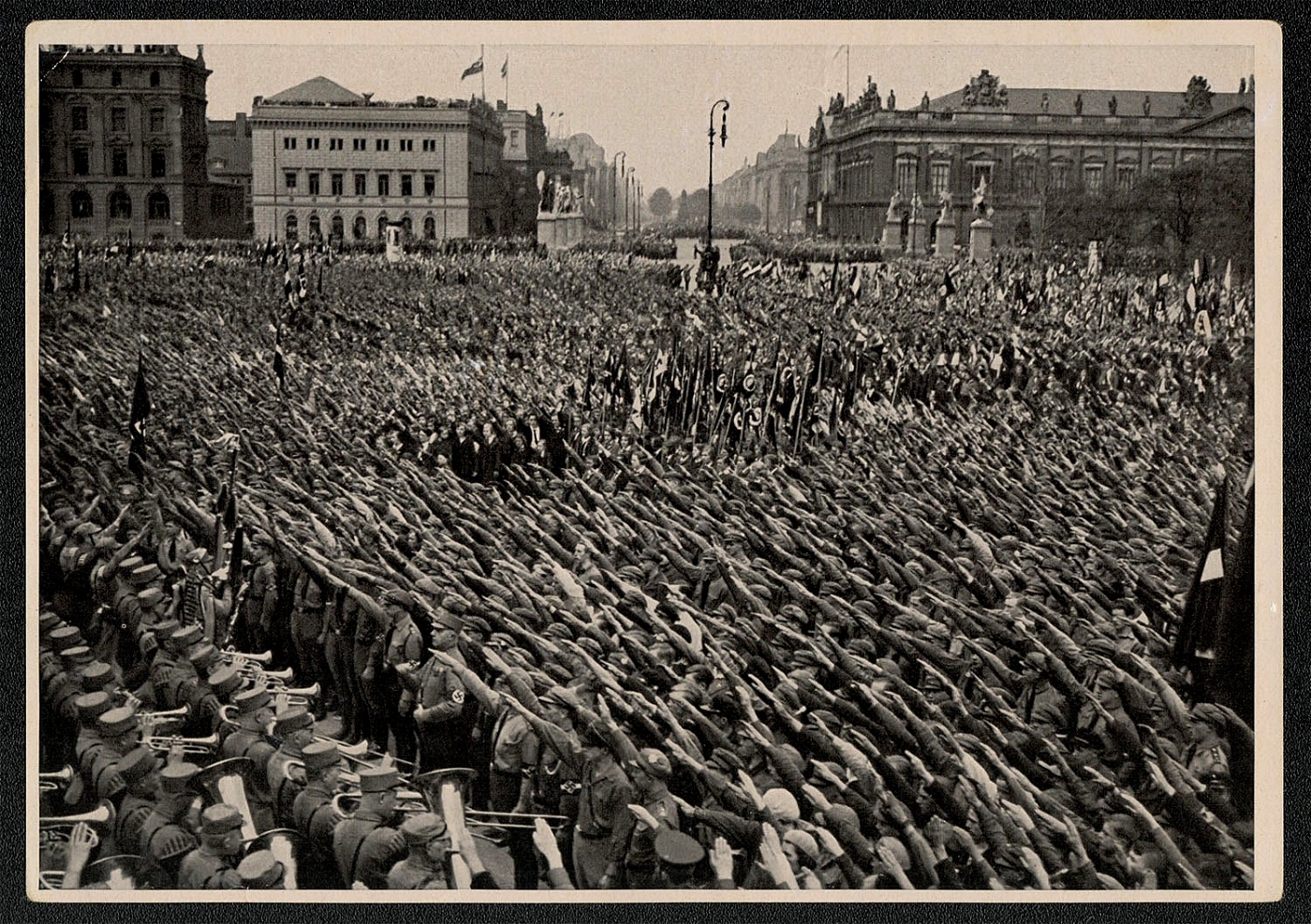
1933 Here in Berlin, stands the youth of the nation, Propaganda Card
Here in Berlin, stands the youth of the nation. 1. May 1933. “Adopting the familiar style of the national missionary, Hitler praised the work power and industry of the people as the greatest asset to the nation, which could no longer be allowed to lie fallow. The new government called on everybody to rid the world of the worries about job security through resolute measures to create work. Hitler’s skillfully composed speech typically contained no concrete information about the future social rights of the workers apart from the announcement of the establishment of Labor Service as a social school for the young generation.” Martin Broszat, The Hitler State
Unsold
785
-
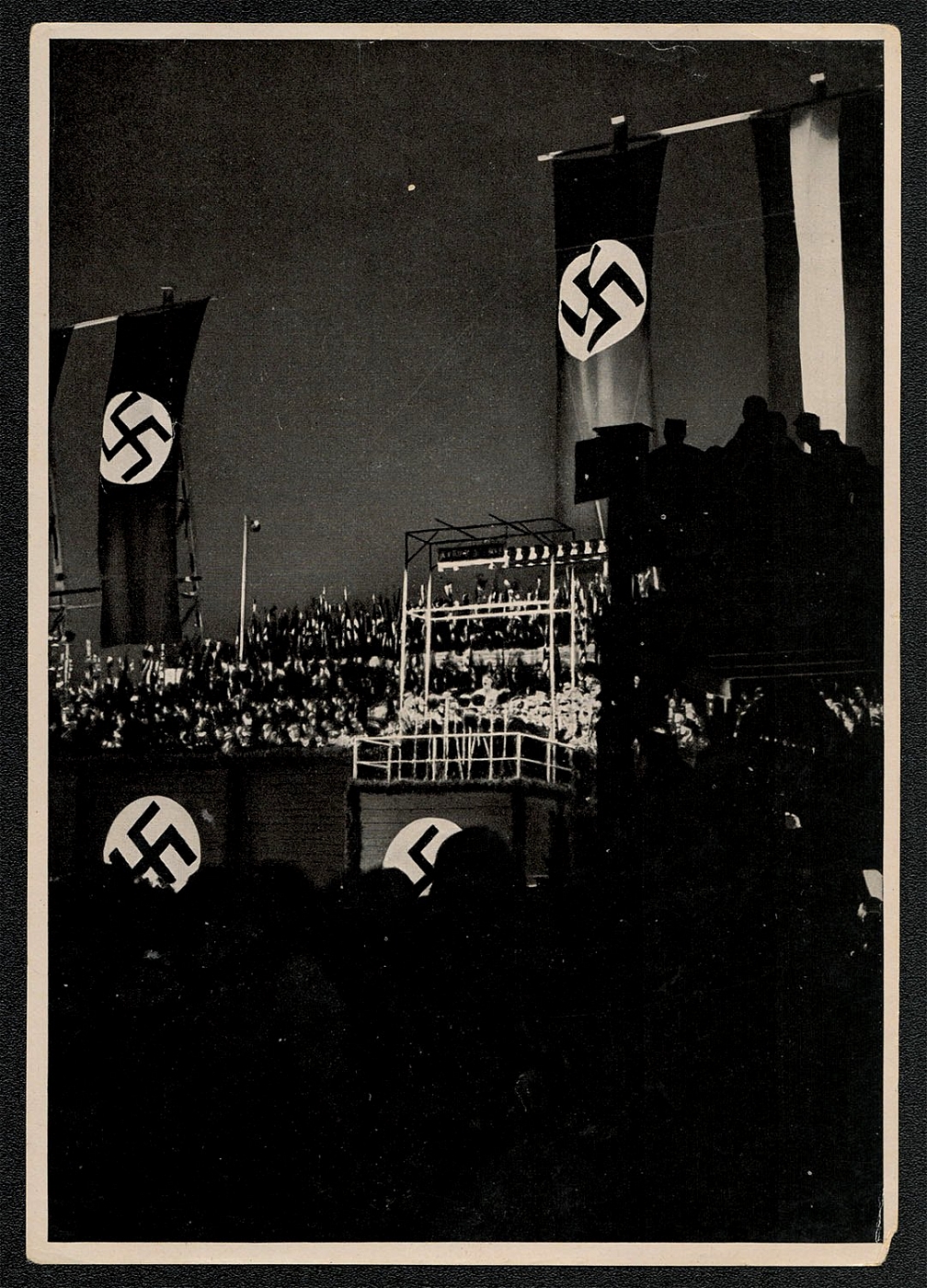
1933 He gives only one dignity, that of work, Propaganda Card
He gives only one dignity, that of work, 1. May 1933. “The regime undoubtedly succeeded in creating a mood of confidence at the massed events on 1 May with its loud (and for many, convincing) declarations of its will for social harmony and the end of material hardship ...” Martin Broszat, The Hitler State
Unsold
786
-
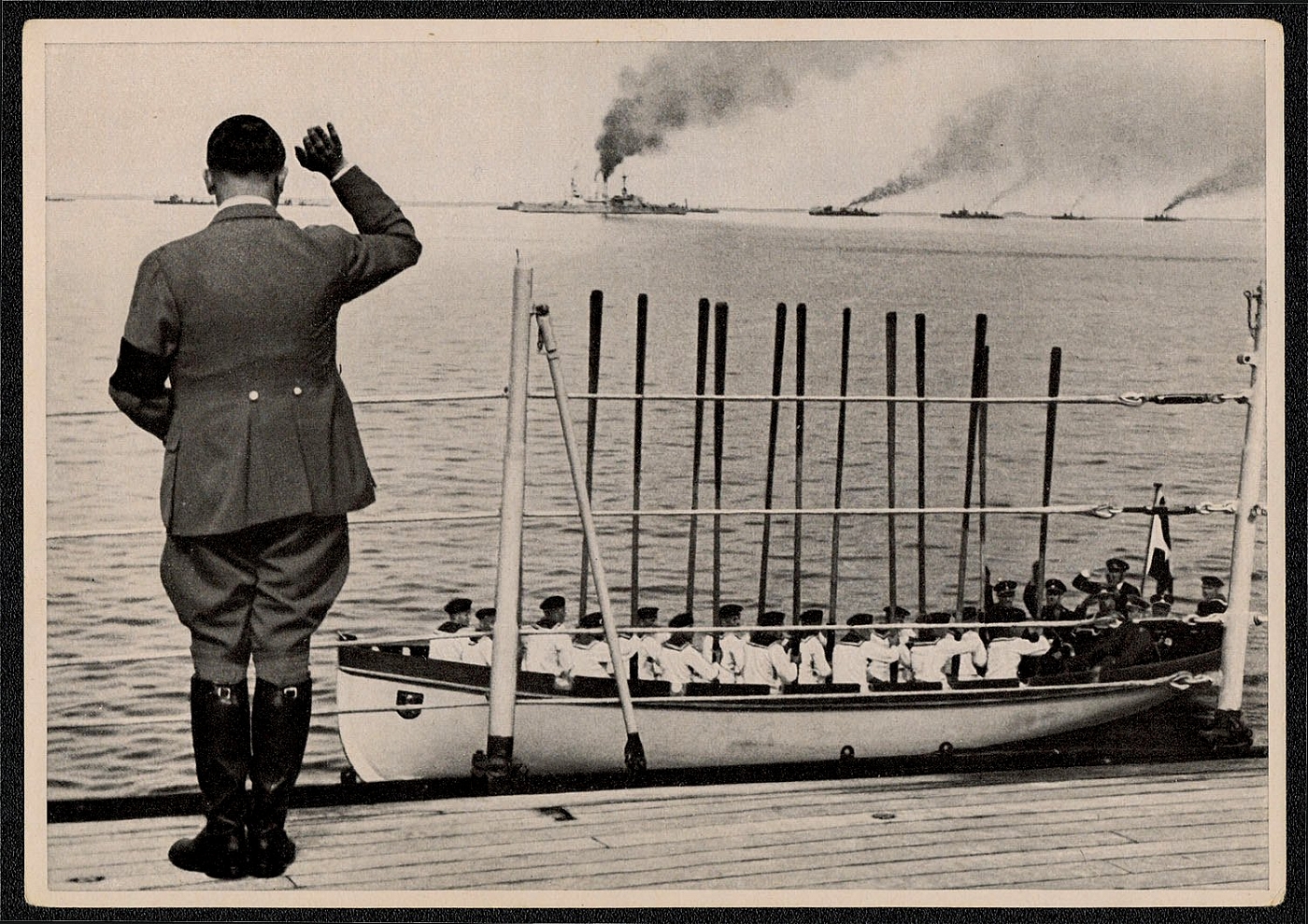
1933 The Fuhrer with the boys in blue, Propaganda Card
The Fuhrer with the boys in blue. “On February 2, 1933 Hitler made a two hour address to the top generals and admirals. Admiral Erich Raeder revealed the tenor of this first meeting of the Nazi Chancellor with the officer corps. Hitler, he said, freed the military elite from its fears that the armed services might be called upon to take part in a civil war and promised that the Army and Navy could now devote themselves unhindered to the main task of quickly rearming the new Germany. On July 20, 1933, the Chancellor promulgated a new Army Law, abolishing the jurisdiction of the civil courts over the military and doing away with the elected representation of the rank and file, thus restoring to the officer corps its ancient military prerogative. A good many generals and admirals began to see the Nazi revolution in a different and more favorable light.”
Unsold
787
-

1933 The Fuhrer speaks to the SA, Propaganda Card
The Fuhrer speaks to the S.A., Dortmund, 1933. “As long as Hitler still needed the revolutionary pressure of the S.A., the S.S., the Party, the NSBO and other National Socialist combat organizations and associations for excluding the other parties, he could give only partial and very careful expression of the need to restore the state’s authority and the rule of law against the continuing ‘revolutionary’ tendencies in the Party, when the National Socialist movement had completed its monopoly of political power in July, however, he quickly changed course and proclaimed the end of the National Socialist revolution. All future reorganization of state and society had to be evolutionary, uniform and directed from above. It was no longer the NSDAP’s primary duty to fight, but to educate.”
Unsold
788
-
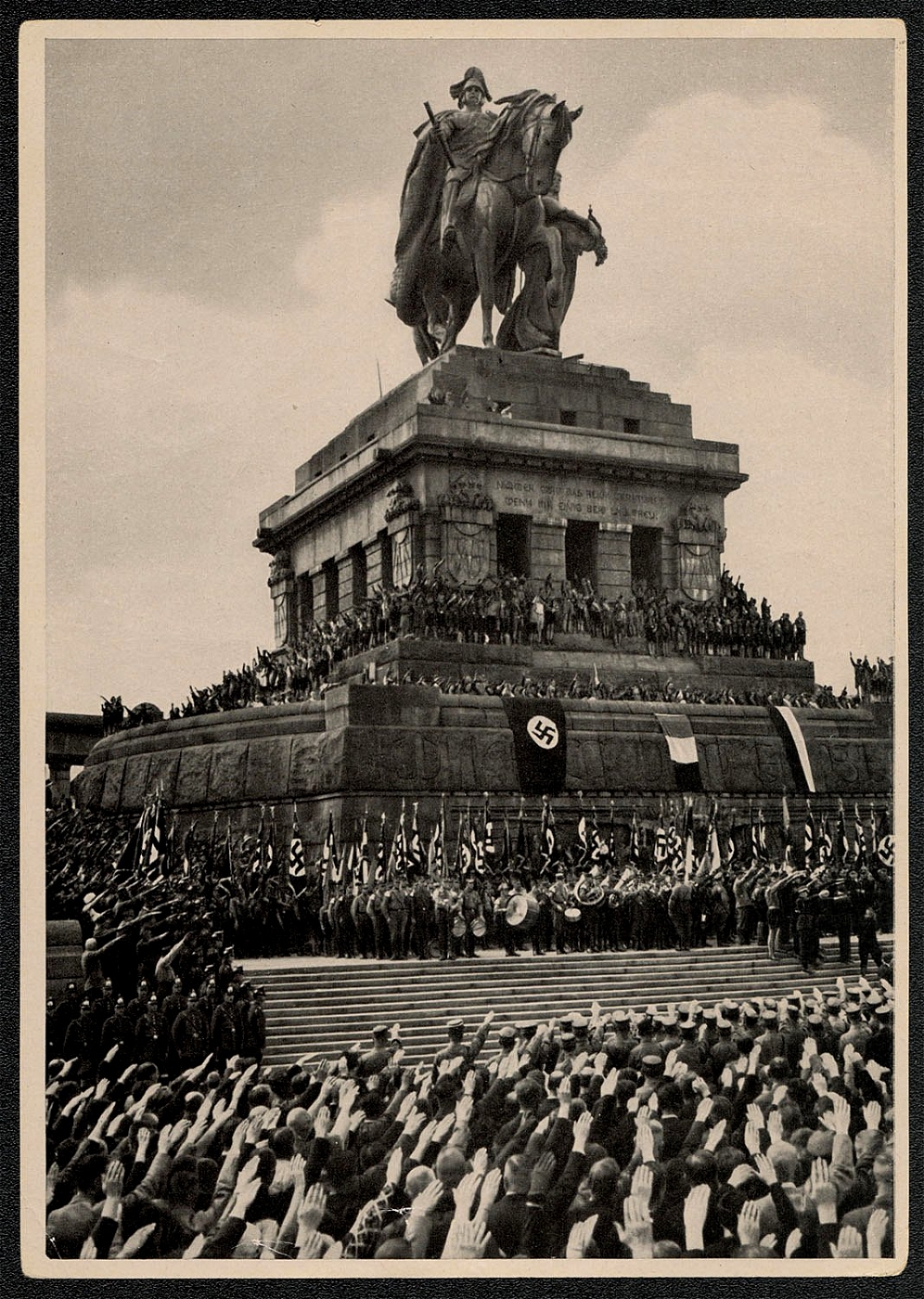
1933 The German Labor Front at the Deutschen Eck, Propaganda Card
"The German Labor Front at the “Deutschen Eck,"" 1933. “The NSDAP single-party state meant the Fuhrer state. It was a logical step, therefore, when the Reich Minister of the Interior informed civil servants on 20 July 1933 that the Hitler salute was ‘to be used generally as the German greeting . . . now that the party system is finished and the entire government of the German Reich is under the control of Reich Chancellor Adolf Hitler.’”"
Unsold
789
-
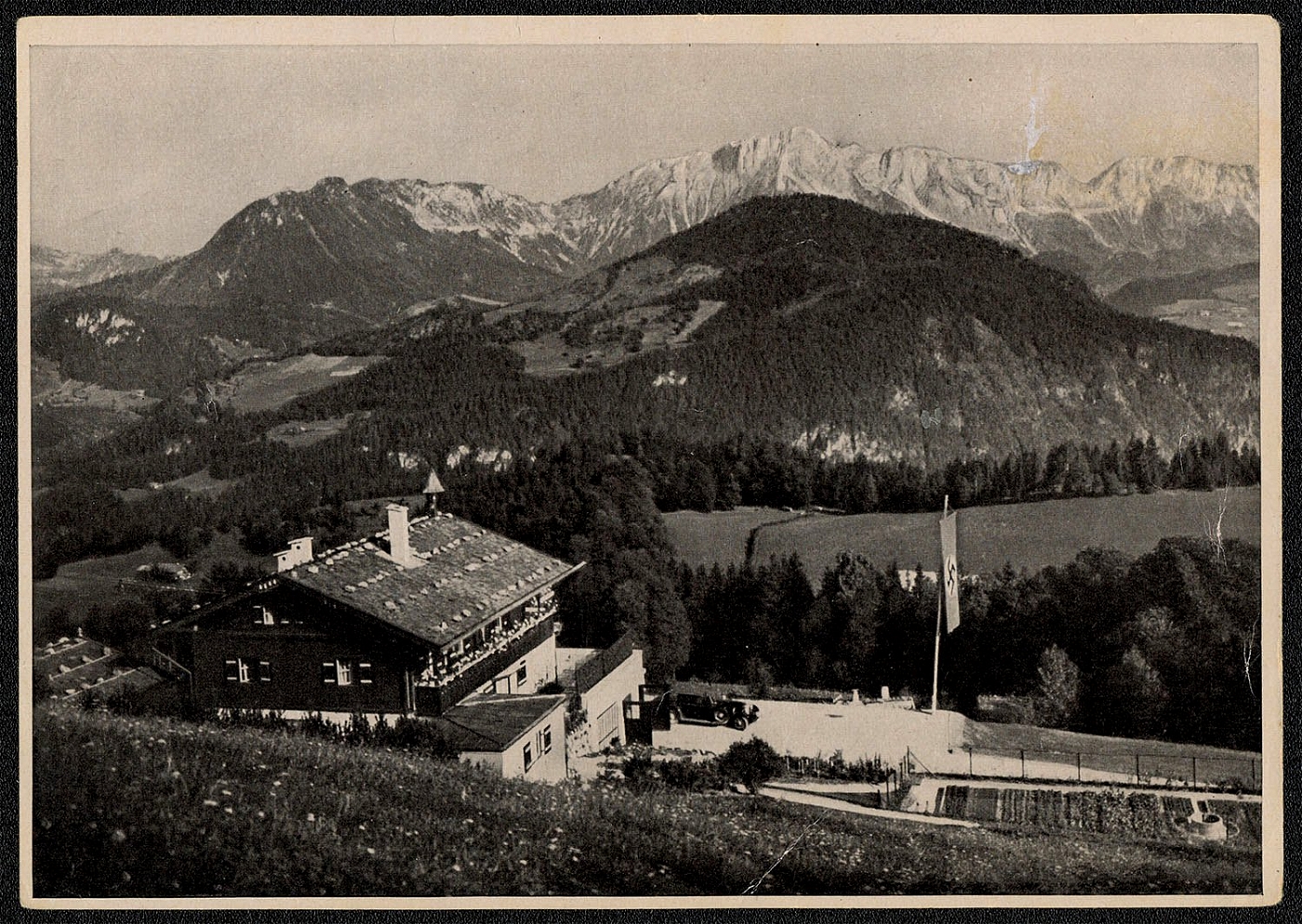
1933 The Fuhrer Adolf Hitler’s house in the Obersalzberg, Propaganda Card
The Fuhrer Adolf Hitler’s house in the Obersalzberg (Berchtesgaden.) Berchtesgaden, a town in the Land (state) of Bavaria in southern Germany is situated on Berchtesgaden Stream in a deep valley surrounded on three sides by Austrian territory. A cable railway links the town to the Obersalzberg (1,640 feet/500 m) in the stately, snow-capped Alps. Here were the chalets of Hitler, Hermann Goring, Martin Bormann, and other NSDAP leaders. The spacious second-floor study in Hitler’s chalet (Der Berghof) had great picture windows that looked out upon Austria, his birthplace. An elevator cut in solid rock connected it to the “Eagle’s Nest,” Hitler’s private retreat on top of the mountain.
Unsold
790
-
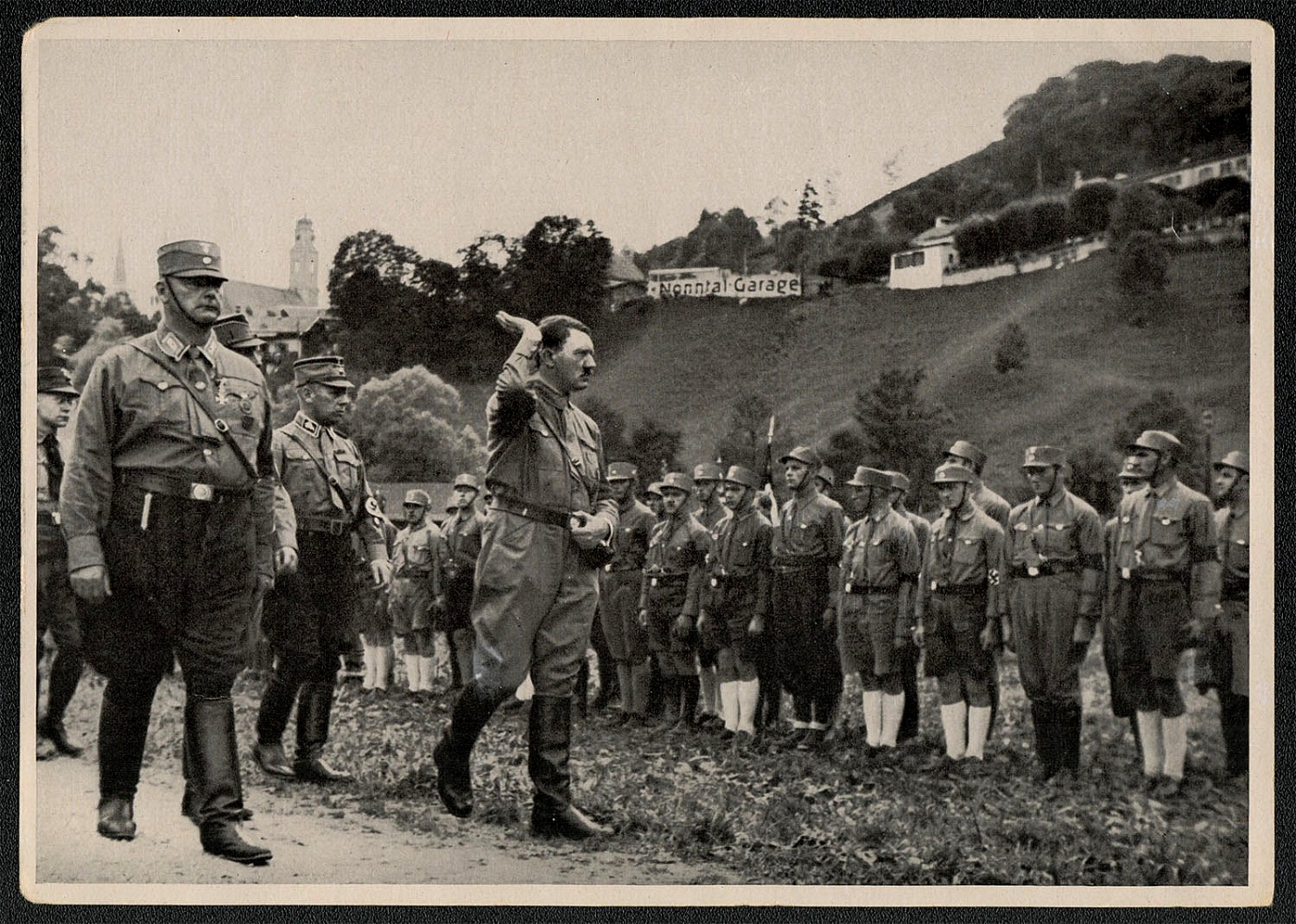
1933 Hitler greets the Berchtesgadener Storm Troopers who fought the good fight, Propaganda Card
Hitler greets the Berchtesgadener Storm Troopers who fought the good fight, 1932. “For more than a year the Reich government and various state governments had been coming into possession of documents which showed that a number of high Nazi leaders, especially in the S.A., now 400,000 strong, had been fully mobilized and had thrown a cordon around Berlin. Though Captain Rohm, the S.A. chief, assured General von Schleicher that the measure was merely ‘precautionary,’ the Prussian police had seized documents at Nazi headquarters in Berlin which made it pretty clear that the S.A. meant to carry out a coup d’etat on the following evening should Hitler be elected President—such was Rohm’s hurry. Goebbels in a diary notation on the night of March 11 had confirmed that something was afoot. ‘Talked over instructions with the S.A. and S.S. commanders. Deep uneasiness is rife everywhere. The word Putsch haunts the air.’”
Unsold
791
-
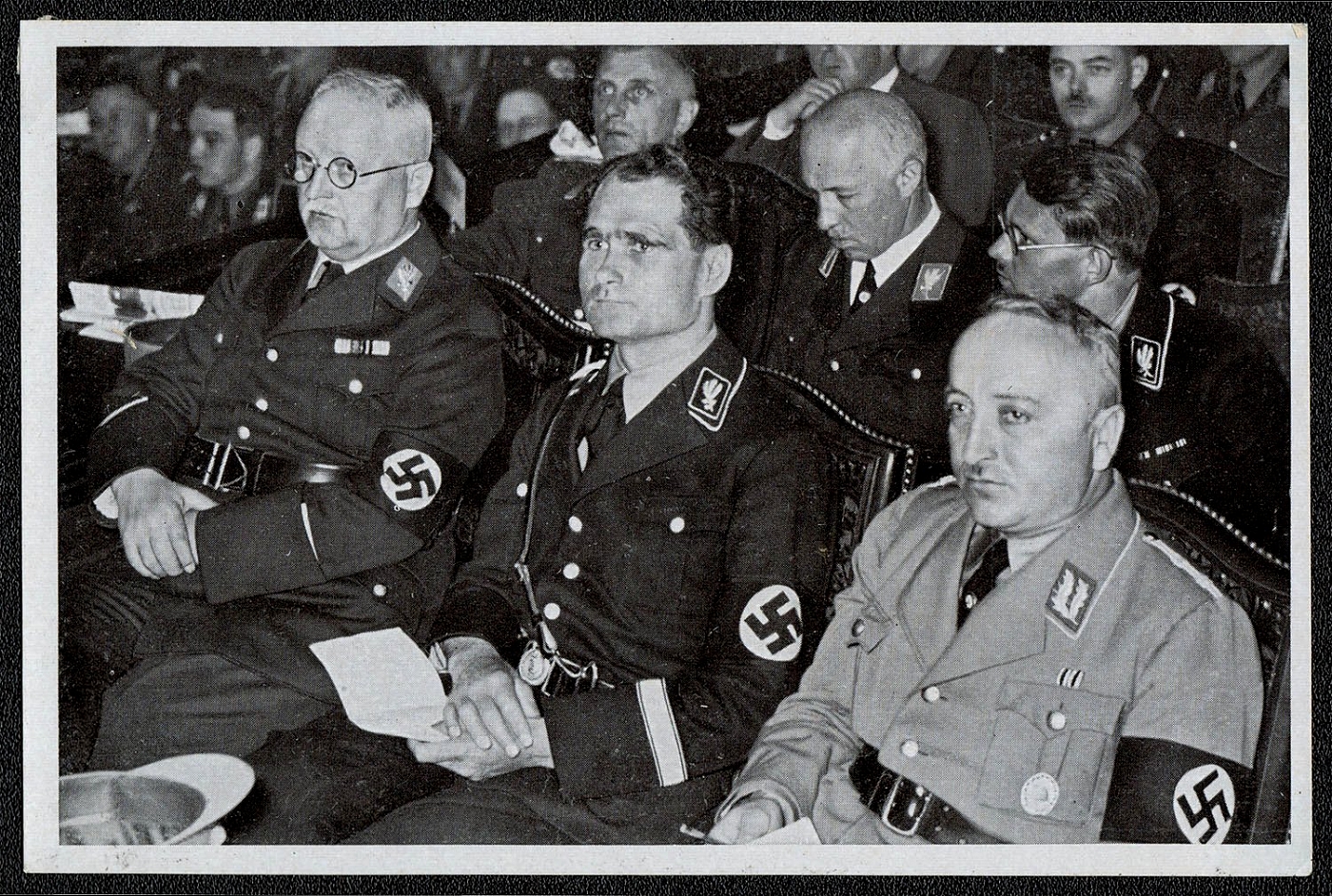
1933 The first Congress of the Labor Front in the Prussian provincial diet, Propaganda Card
The first Congress of the Labor Front in the Prussian provincial diet, 1933.
Unsold
792
-
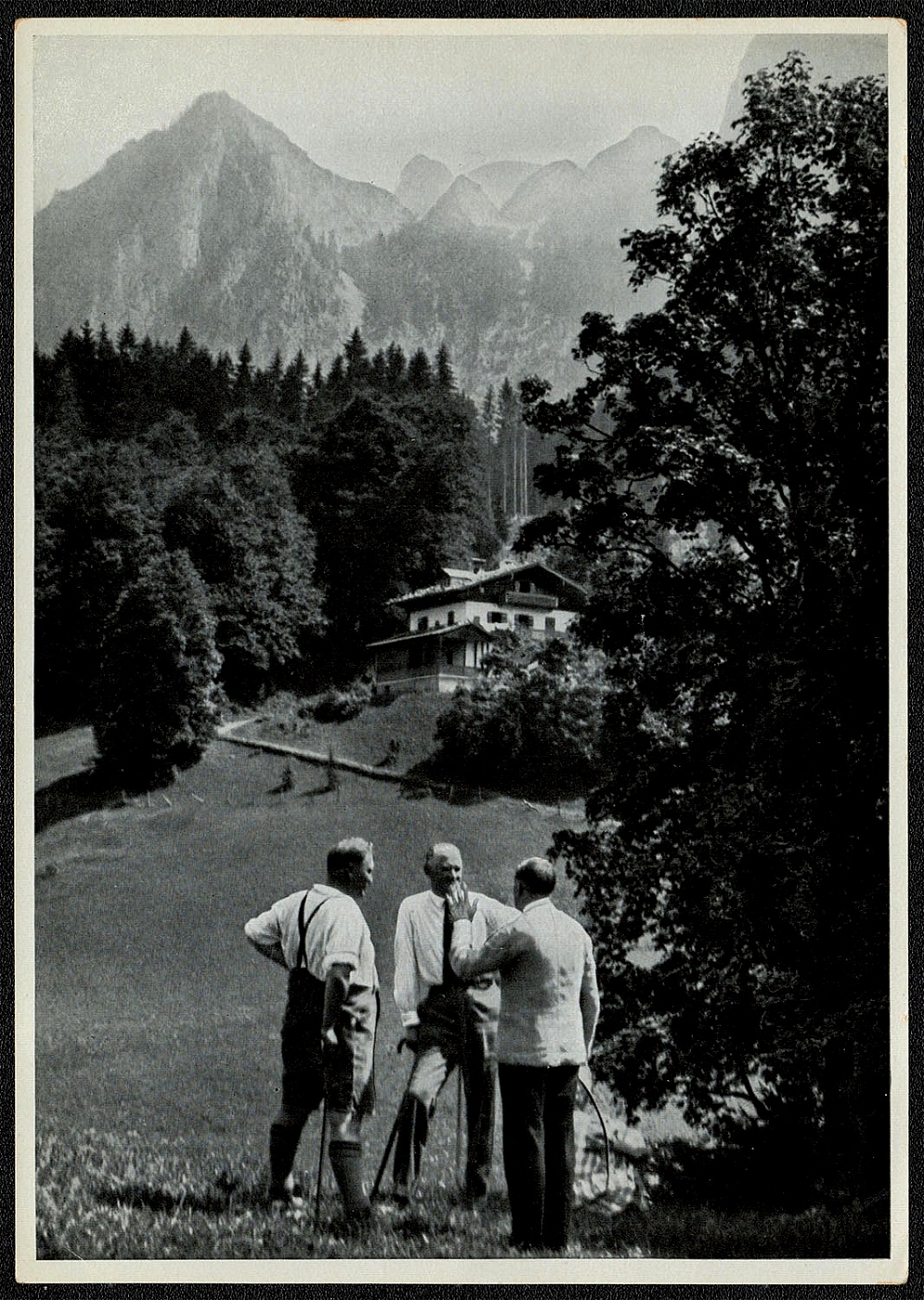
793
-
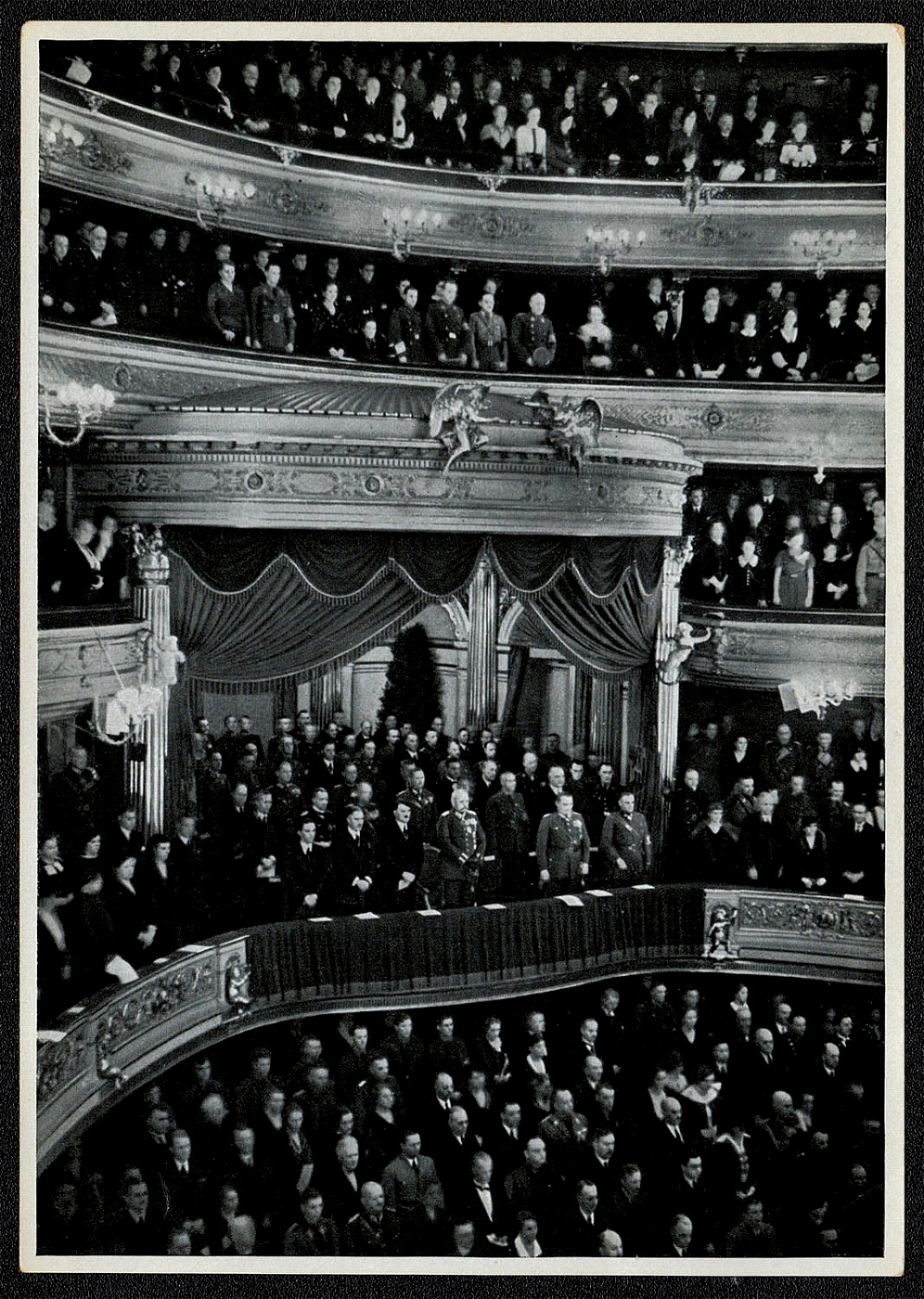
1934 Volks Day of Mourning The Celebration in the Berlin State Opera House, Propaganda Card
Volks Day of Mourning, 1934. The Celebration in the Berlin State Opera House
Unsold
794
-
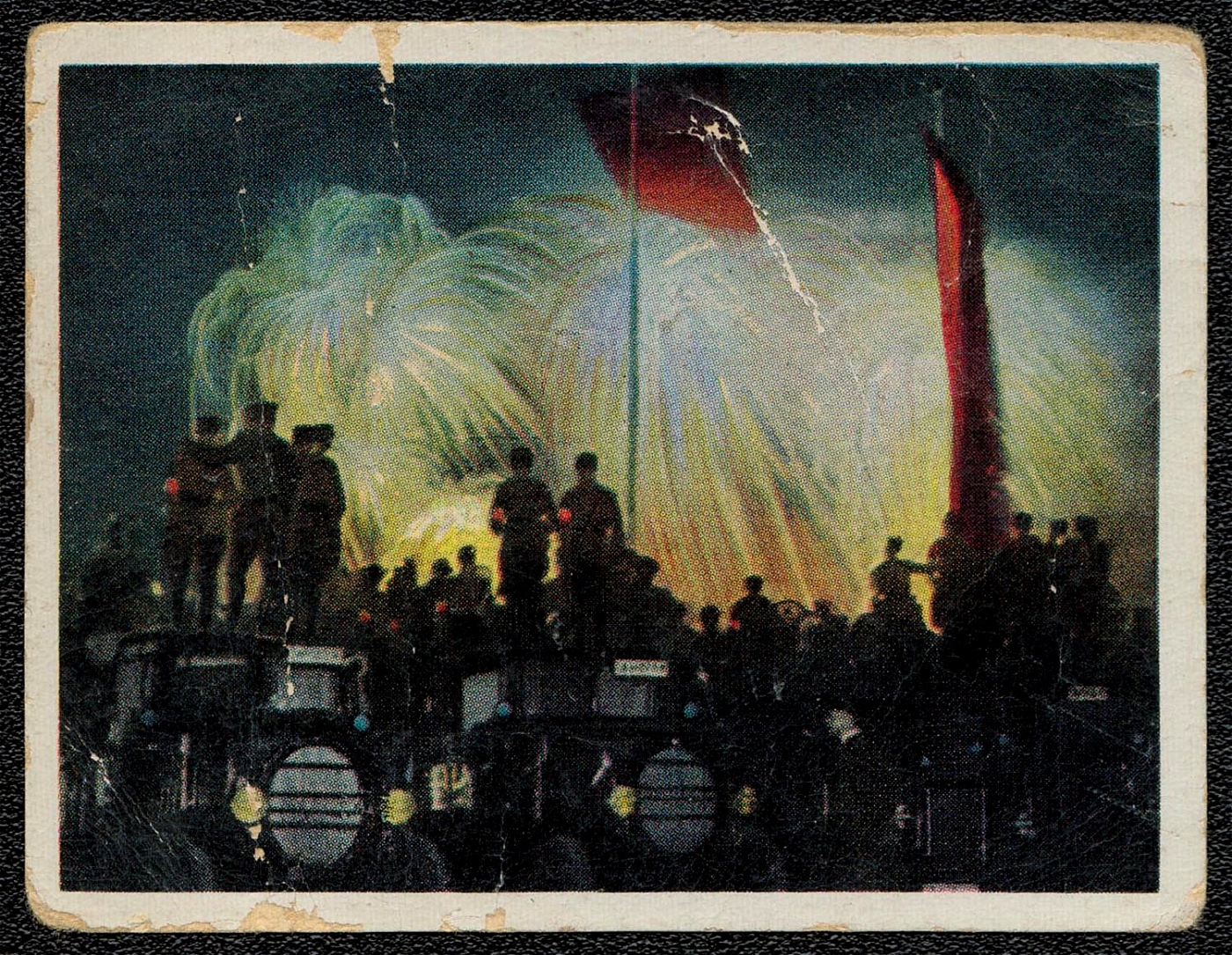
1933 Fireworks Cigarette Package Pictures
These photographs taken by Heinrich Hoffmann were part of a lengthy series of historical pictures (Historische Bilderfolge) published by Cigarettenfabrik G.M.B.H, of Dresden, manufacturers of Salem and Constantin cigarettes. They were to be mounted in an annotated album also published by the cigarette company in May 1933.
Unsold
795
-
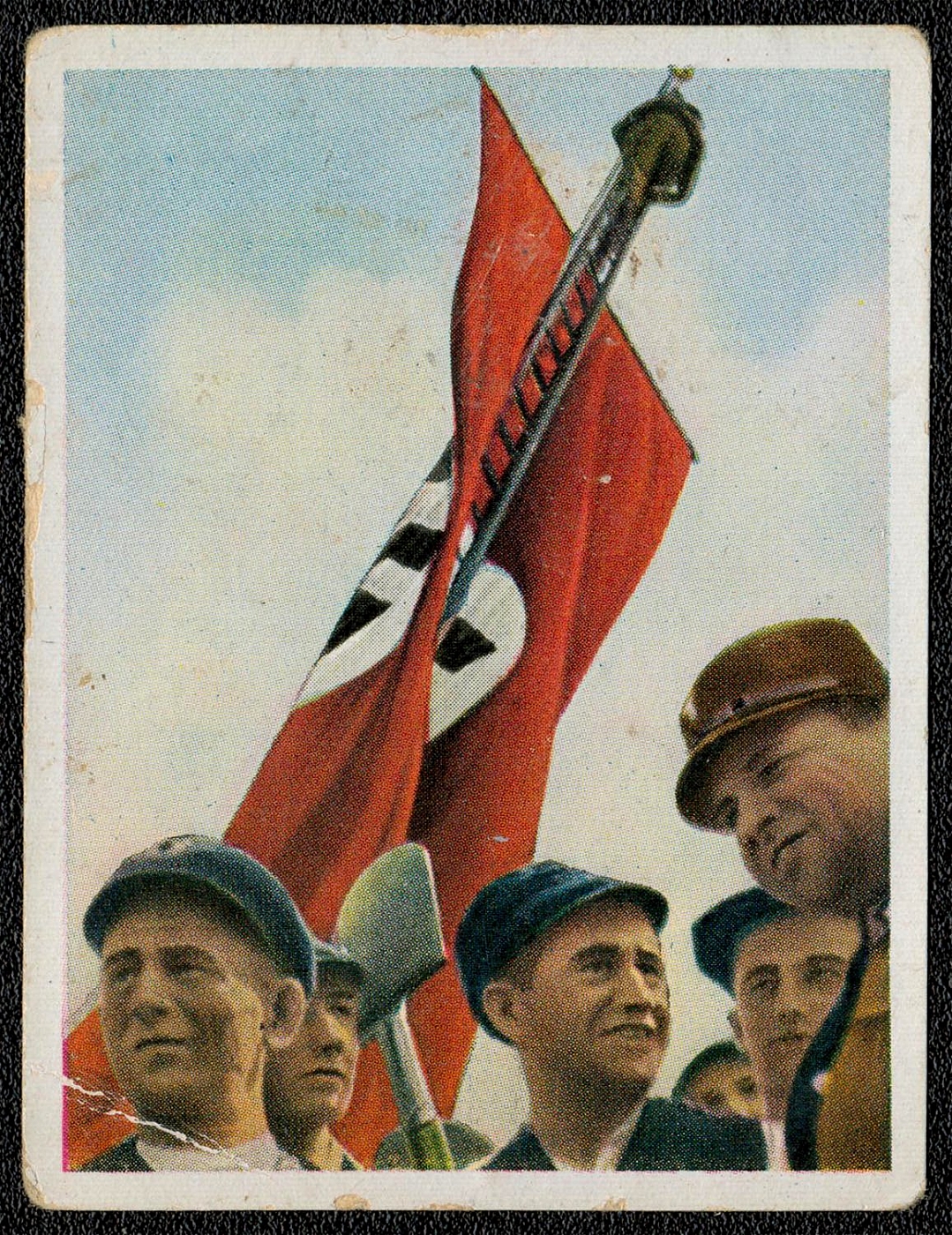
1933 Workers Cigarette Package Pictures
These photographs taken by Heinrich Hoffmann were part of a lengthy series of historical pictures (Historische Bilderfolge) published by Cigarettenfabrik G.M.B.H, of Dresden, manufacturers of Salem and Constantin cigarettes. They were to be mounted in an annotated album also published by the cigarette company in May 1933.
Unsold
796
-
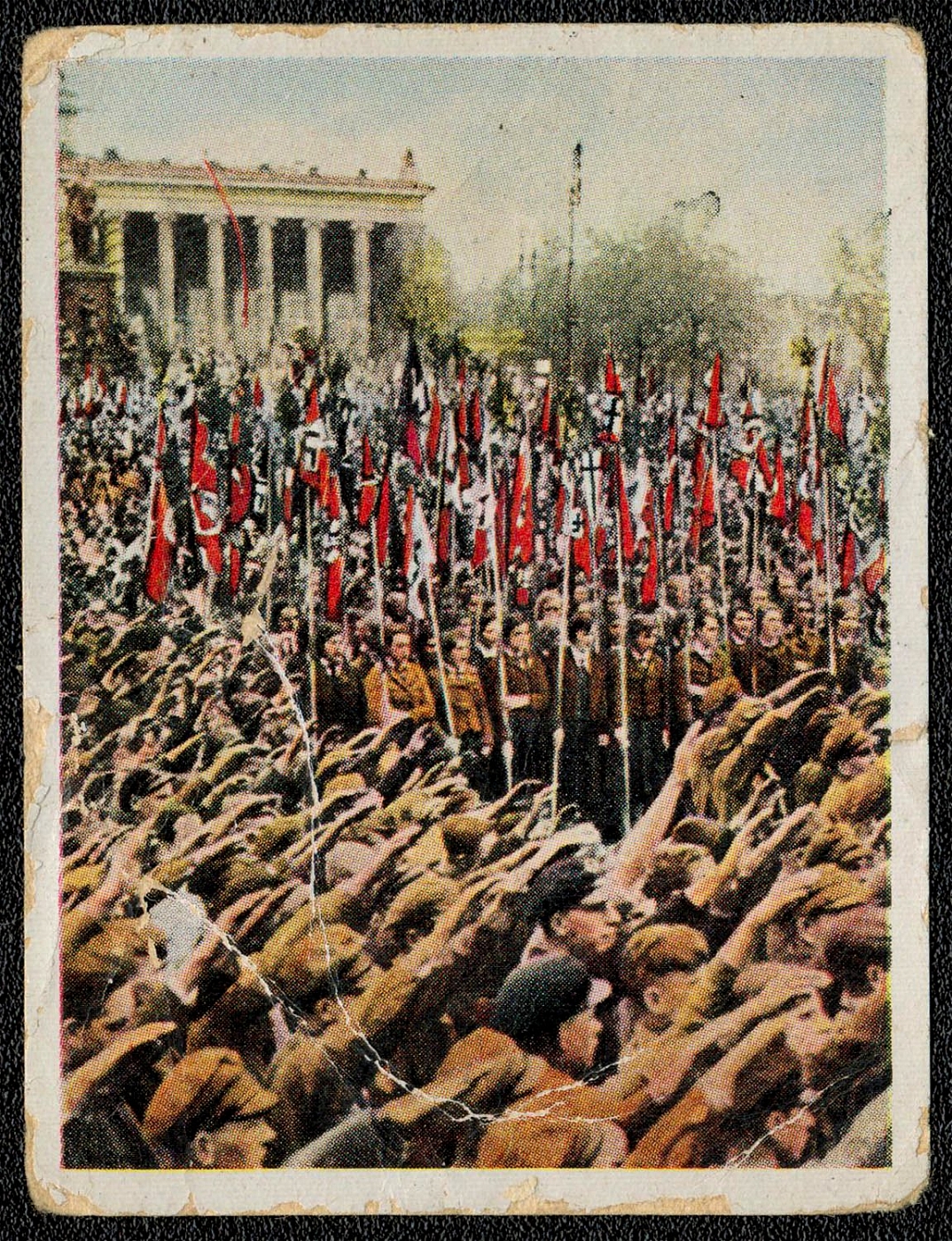
1933 The Youth Rally in the Luftgarten Cigarette Package Pictures
These photographs taken by Heinrich Hoffmann were part of a lengthy series of historical pictures (Historische Bilderfolge) published by Cigarettenfabrik G.M.B.H, of Dresden, manufacturers of Salem and Constantin cigarettes. They were to be mounted in an annotated album also published by the cigarette company in May 1933.
Unsold
797
-
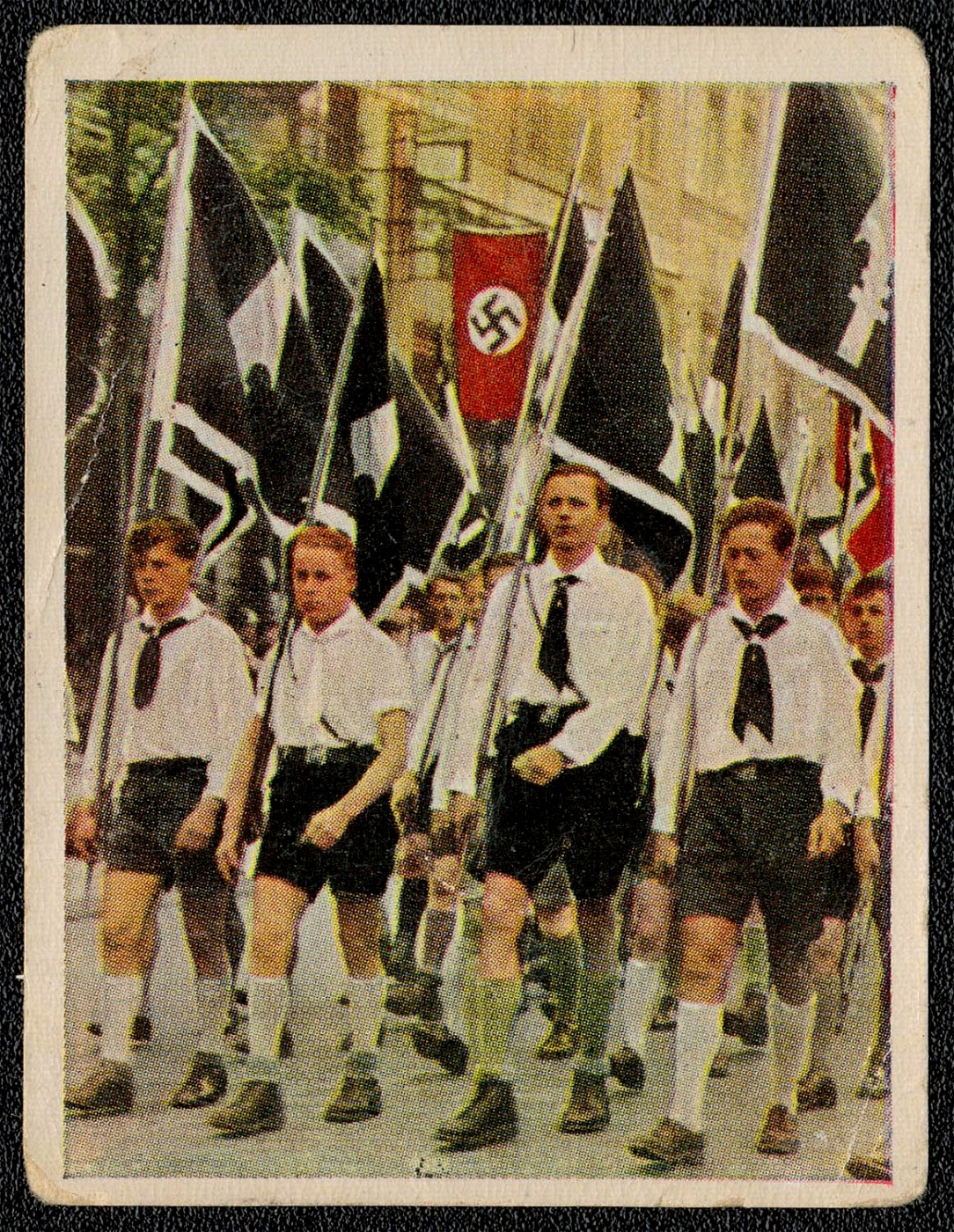
1933 Hitler Youth Cigarette Package Pictures
These photographs taken by Heinrich Hoffmann were part of a lengthy series of historical pictures (Historische Bilderfolge) published by Cigarettenfabrik G.M.B.H, of Dresden, manufacturers of Salem and Constantin cigarettes. They were to be mounted in an annotated album also published by the cigarette company in May 1933.
Unsold
798
-
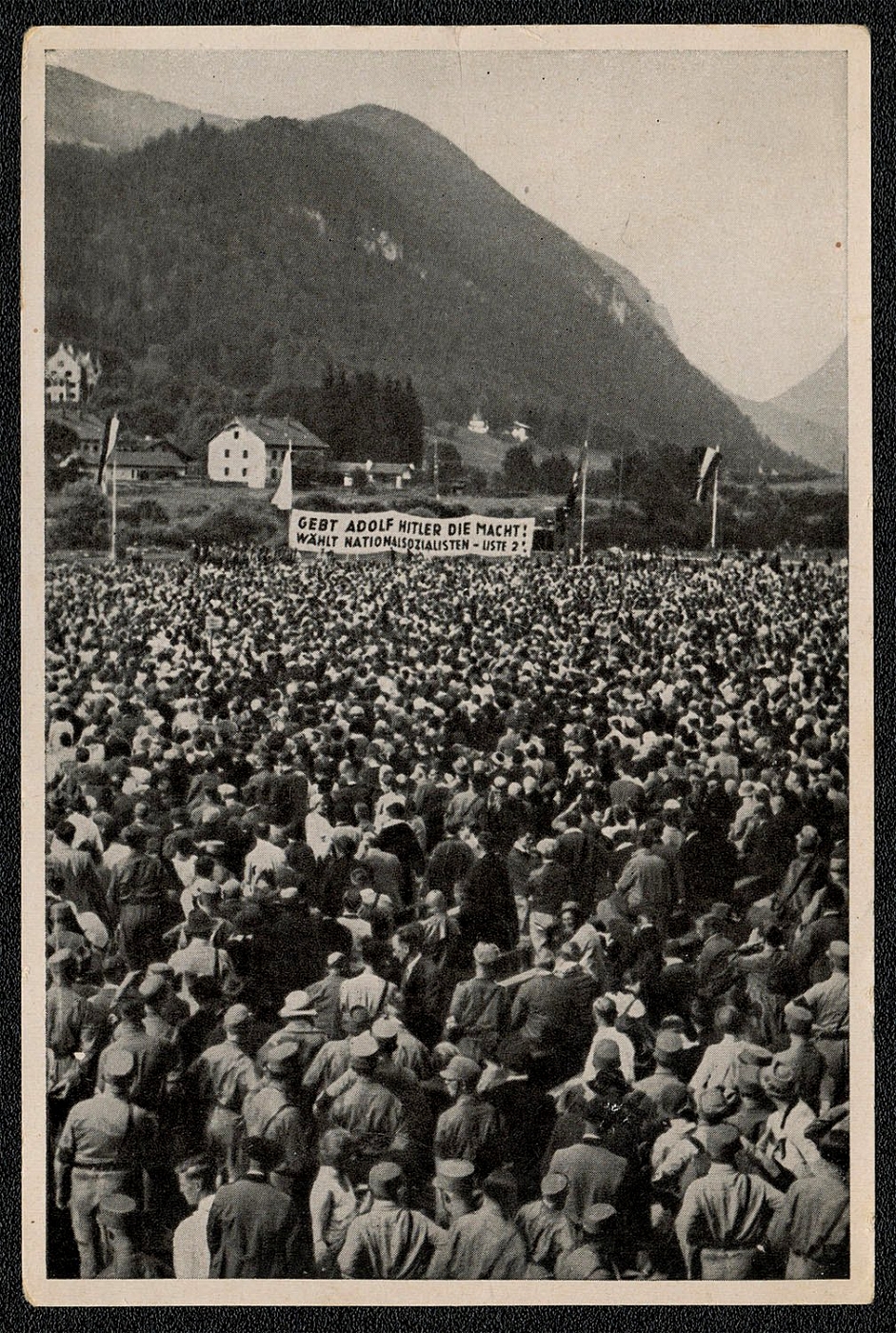
1933 Making their choice known in Oberbayern. Cigarette card
(Making their choice known in Oberbayern 1932) The banner reads: Give Adolf Hitler the authority! Chose the National Socialist Ticket
Unsold
799
-
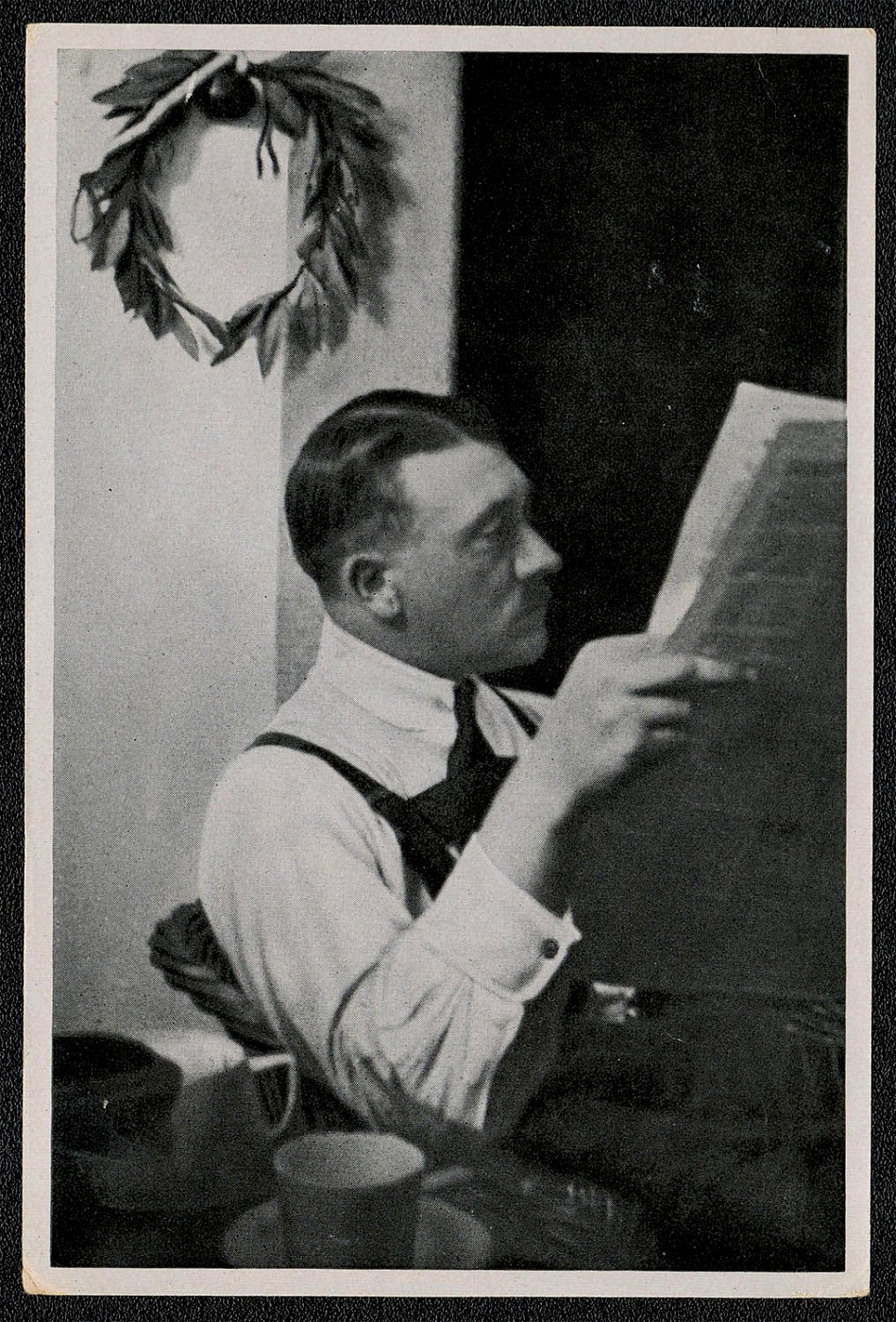
1933 Accepting the 1924 imprisonment in Fortress Landsberg. Cigarette card
Accepting the 1924 imprisonment in Fortress Landsberg
Unsold
800
-
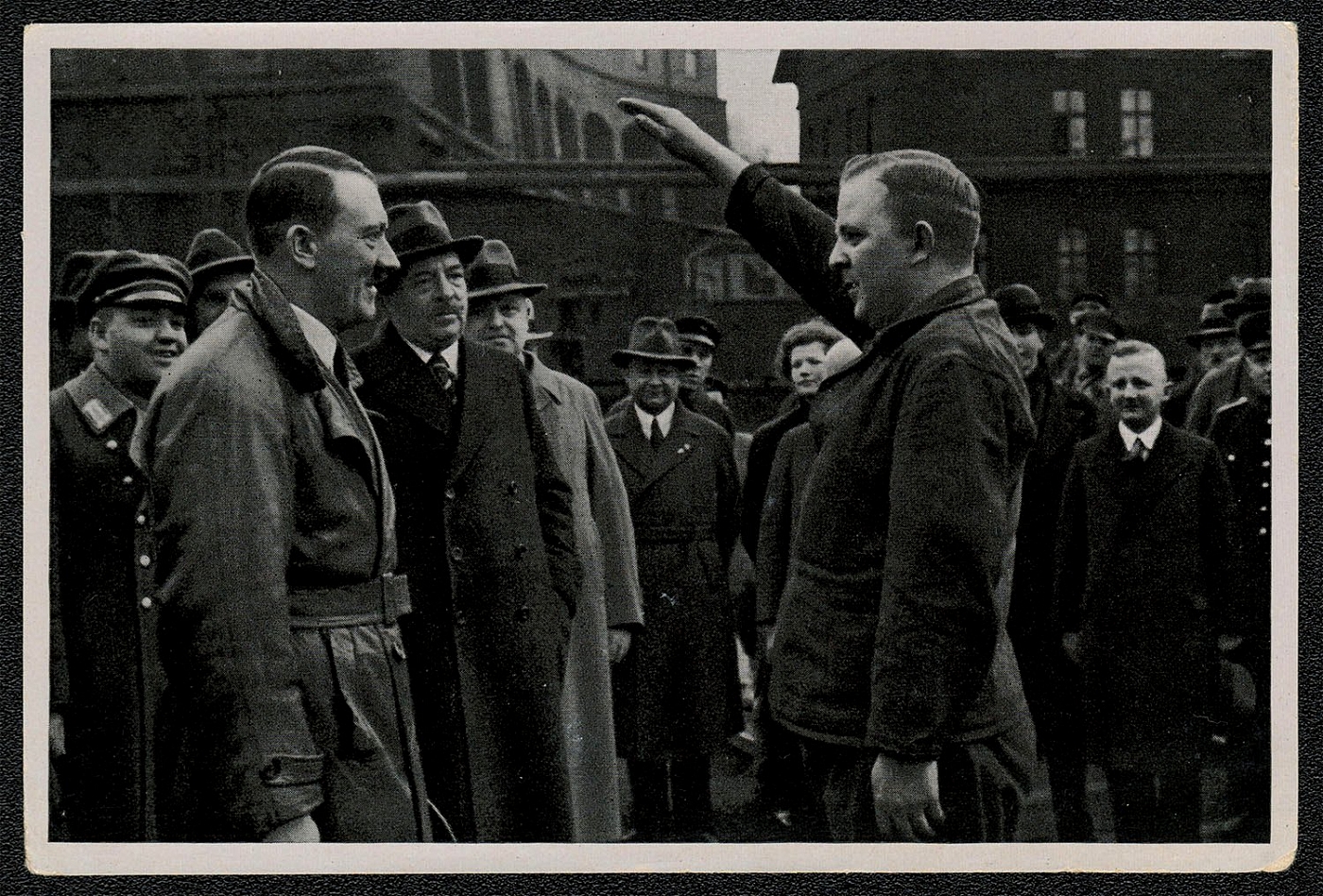
1933 A visit to the factory. The marketing manager and personnel greet the Fuhrer.. Cigarette card
A visit to the factory. The marketing manager and personnel greet the Fuhrer.
Unsold
801
-
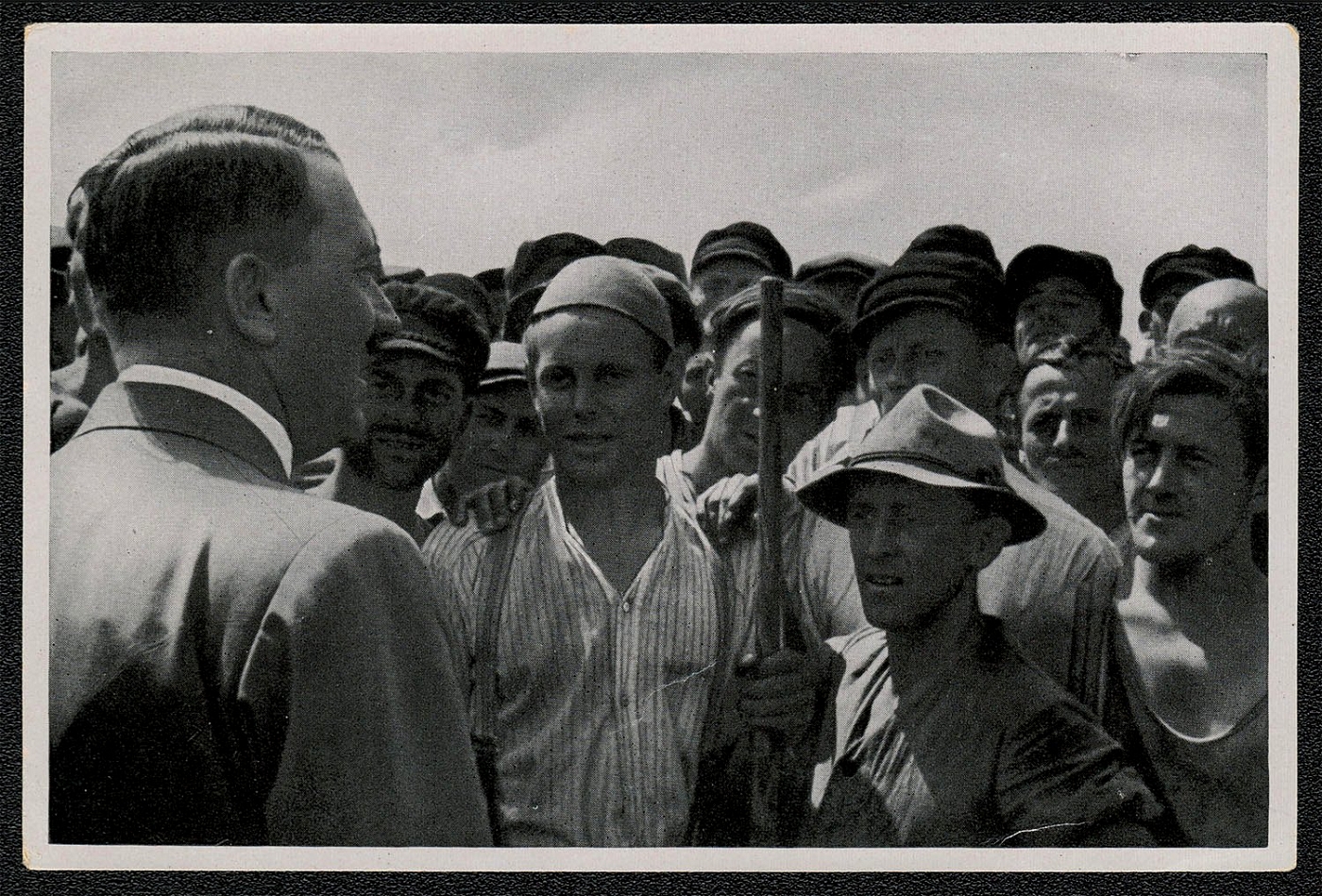
1933 So stirring, a statesman among the workers. Cigarette card
So stirring, a statesman among the workers.
Unsold
802
-
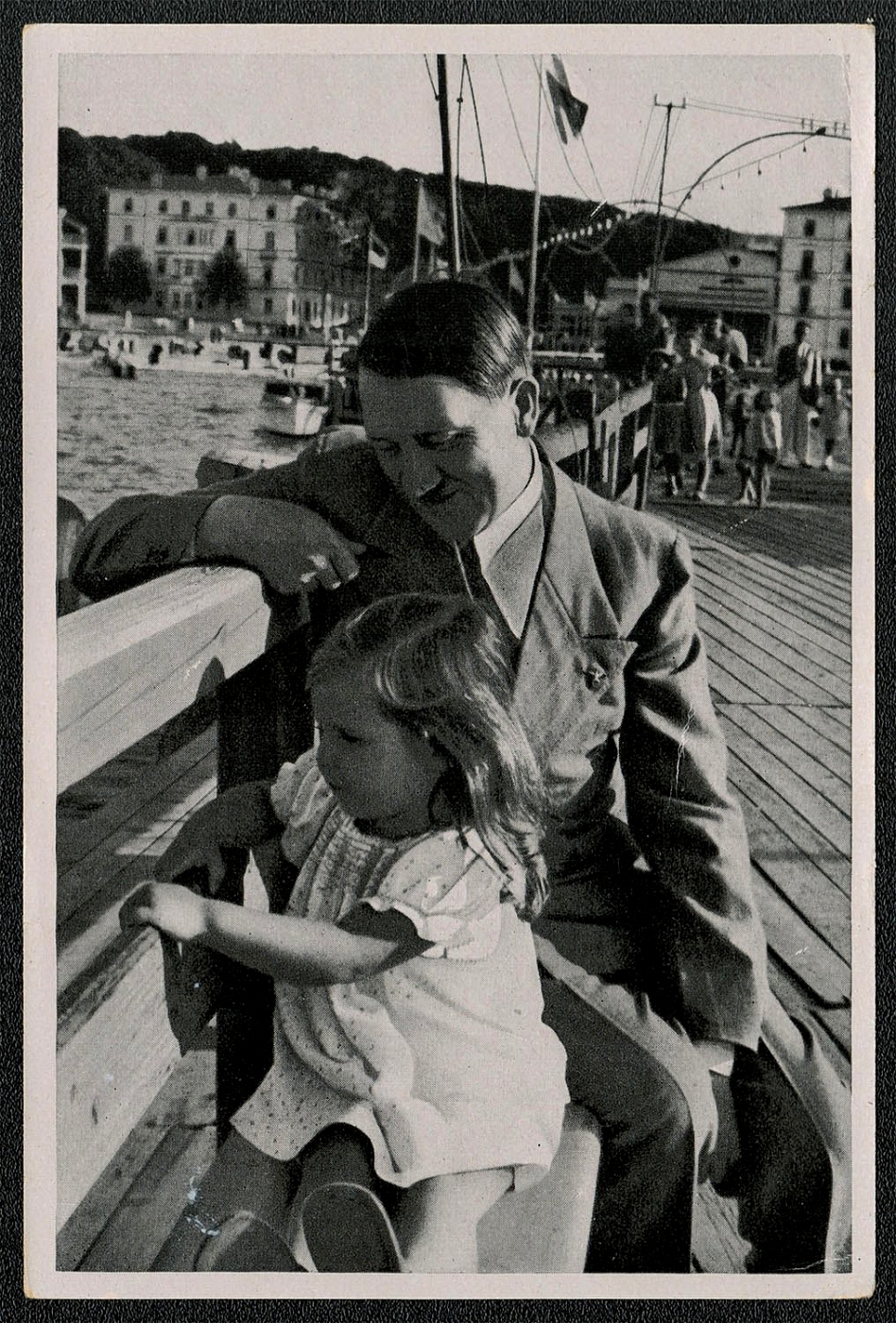
1933 Days of rest. Der Fuhrer and little Helga Goebbels. Cigarette card
Days of rest. Der Fuhrer and little Helga Goebbels.
Unsold
Lots:
803 - 1107
Lot Number
Price
803
-
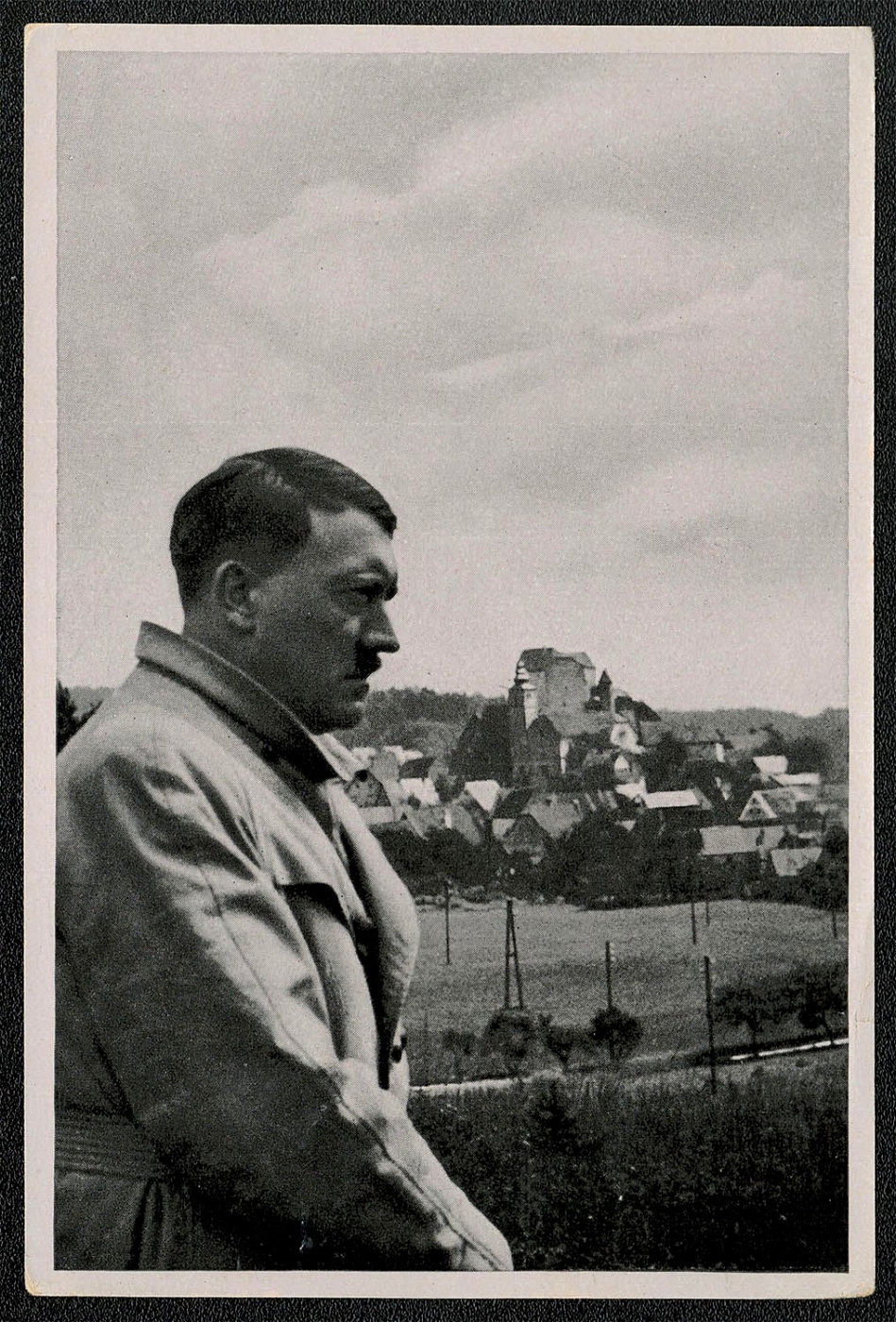
1933 In the German countryside. Hiltpoltstein in the Frankische Schweiz. Cigarette card
In the German countryside. Hiltpoltstein in the Frankische Schweiz.
Unsold
804
-
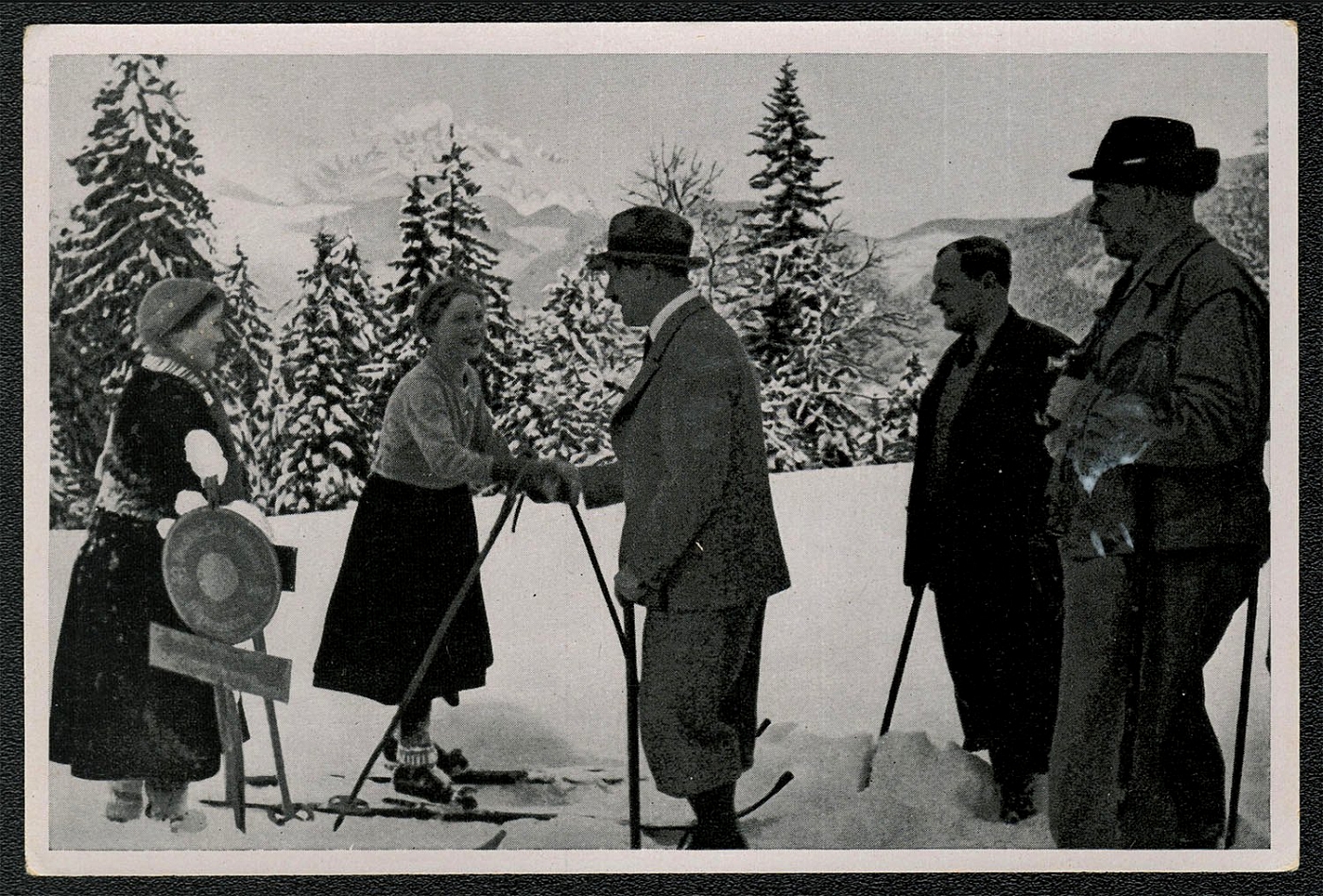
805
-
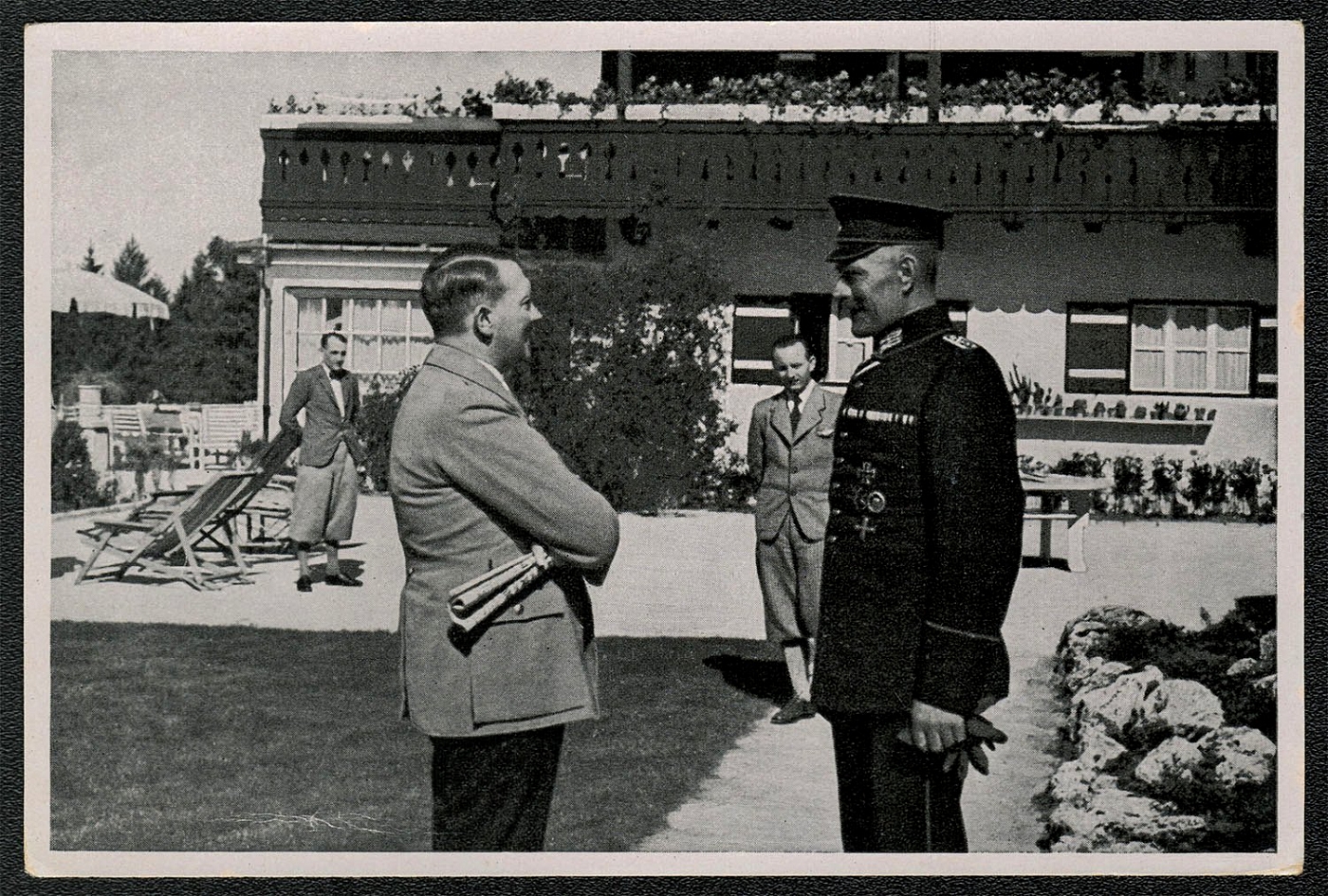
1933 A comrade in the field visits with the Fuhrer. Cigarette card
A comrade in the field visits with the Fuhrer.
Unsold
806
-
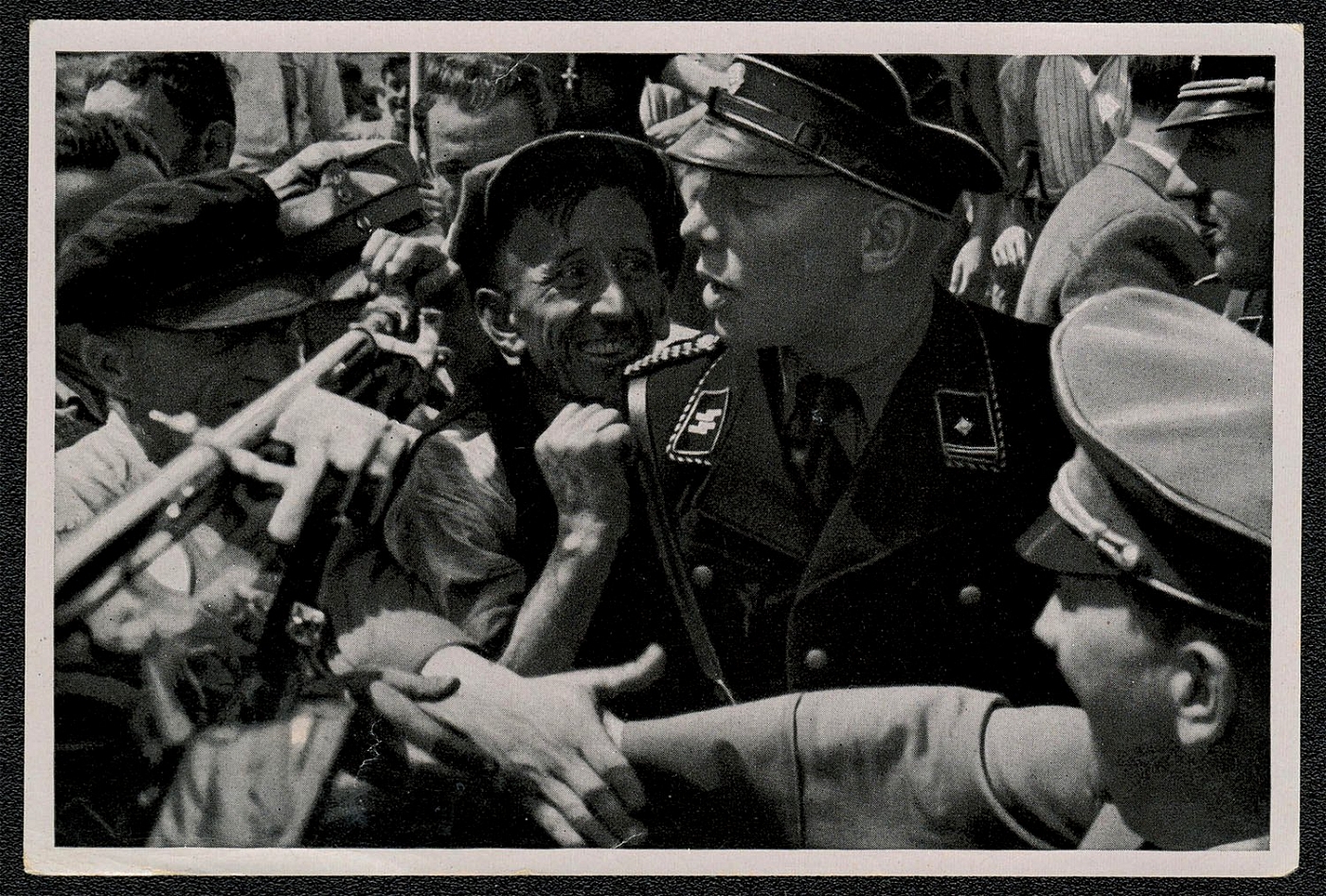
1933 Each wants once to take hold of the Fuhrer’s hand. Cigarette card
Each wants once to take hold of the Fuhrer’s hand.
Unsold
807
-
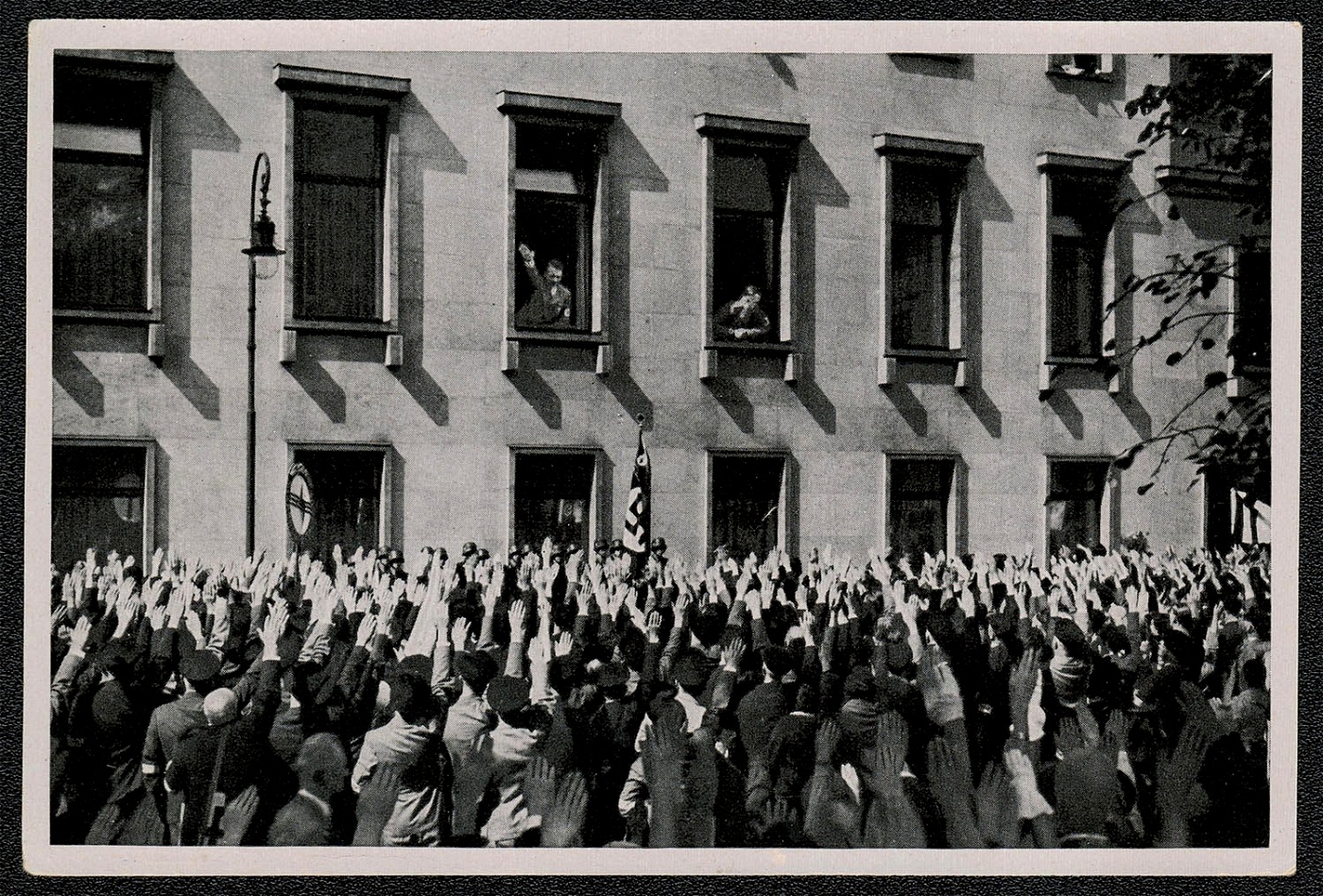
1933 Delegation from the Saar Territory before the Reichs Chancellor. Cigarette card
Delegation from the Saar Territory before the Reichs Chancellor.
Unsold
808
-
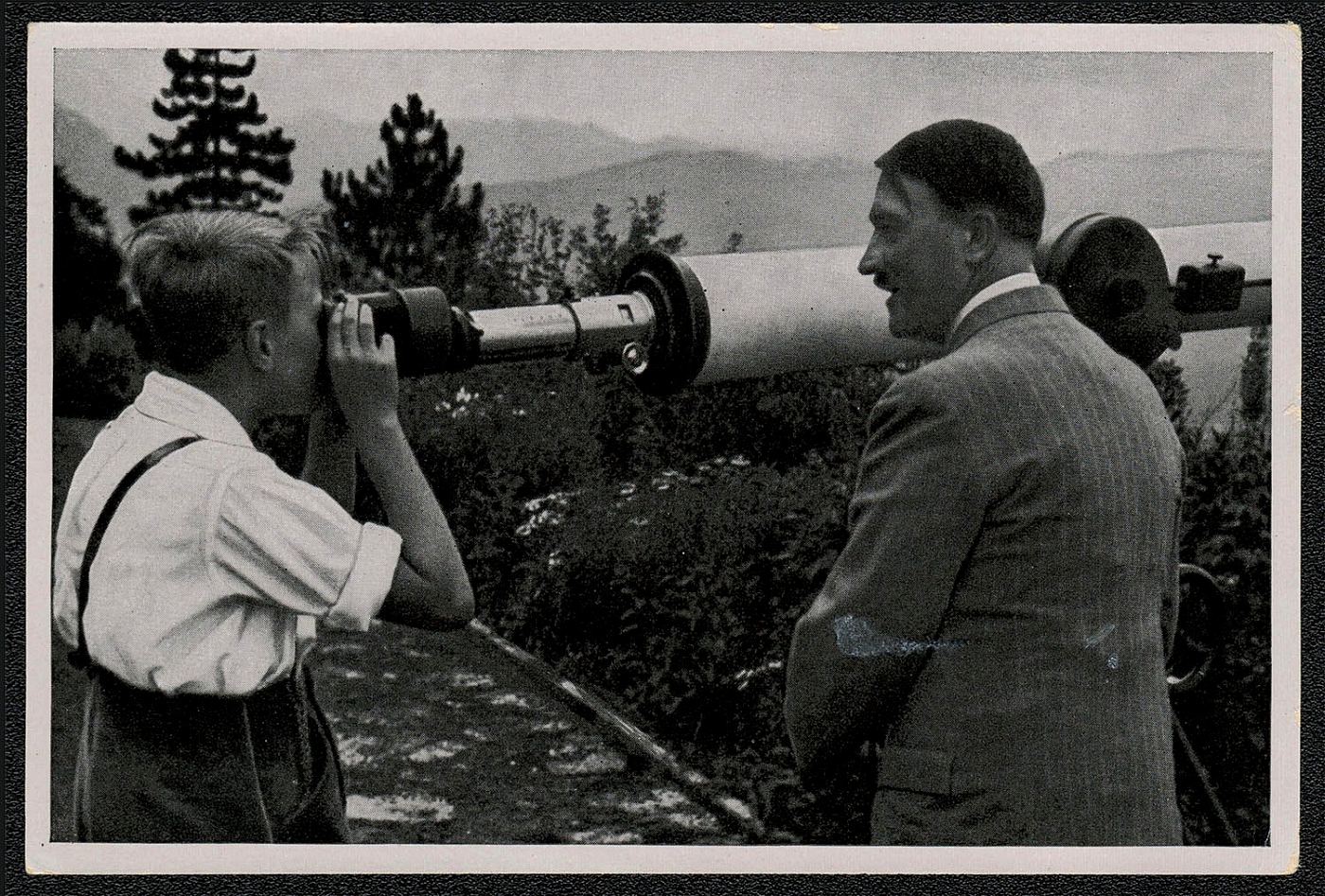
809
-
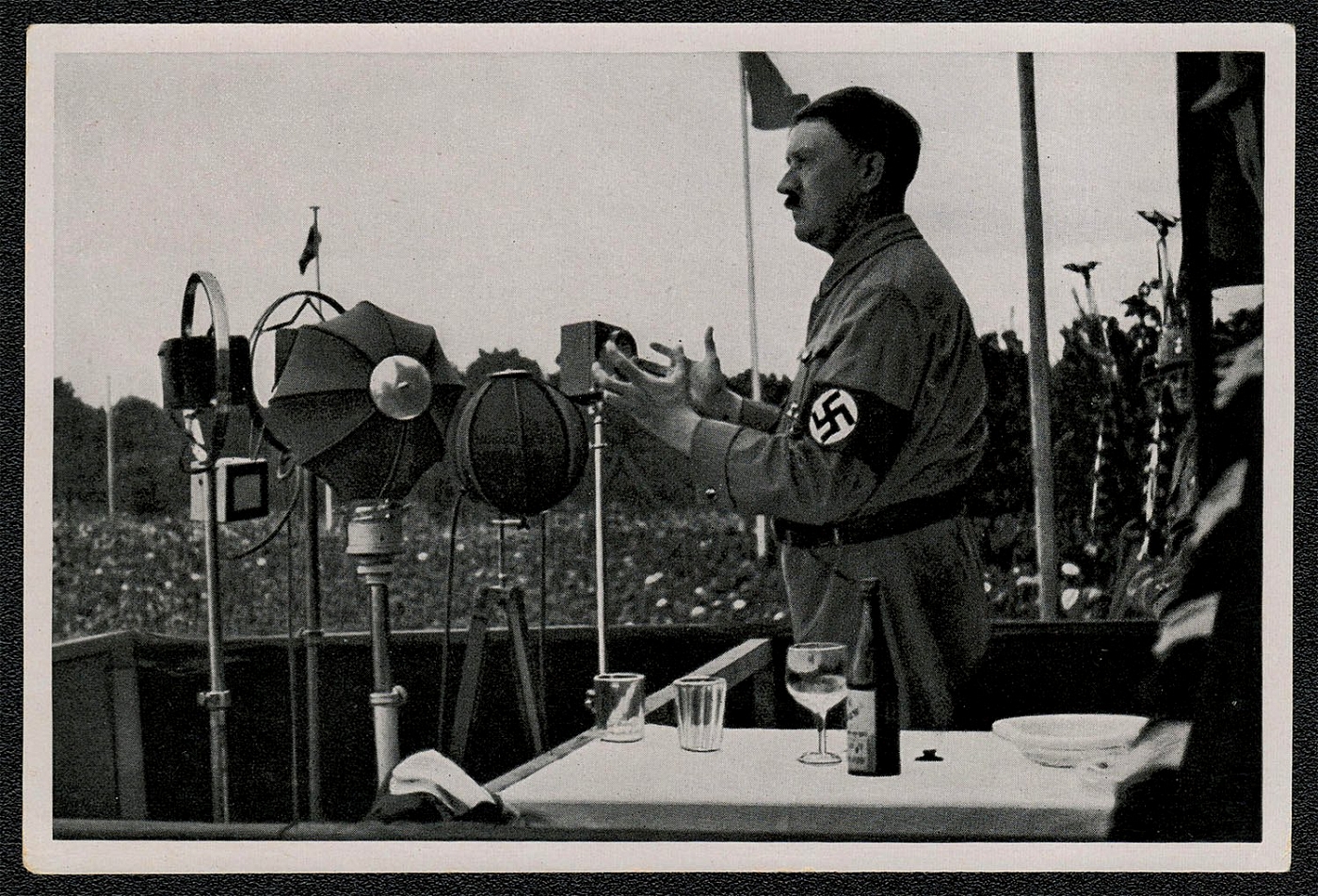
1933Der Fuhrcr speaks to the German Volk. Cigarette card
Der Fuhrcr speaks to the German Volk.
Unsold
810
-
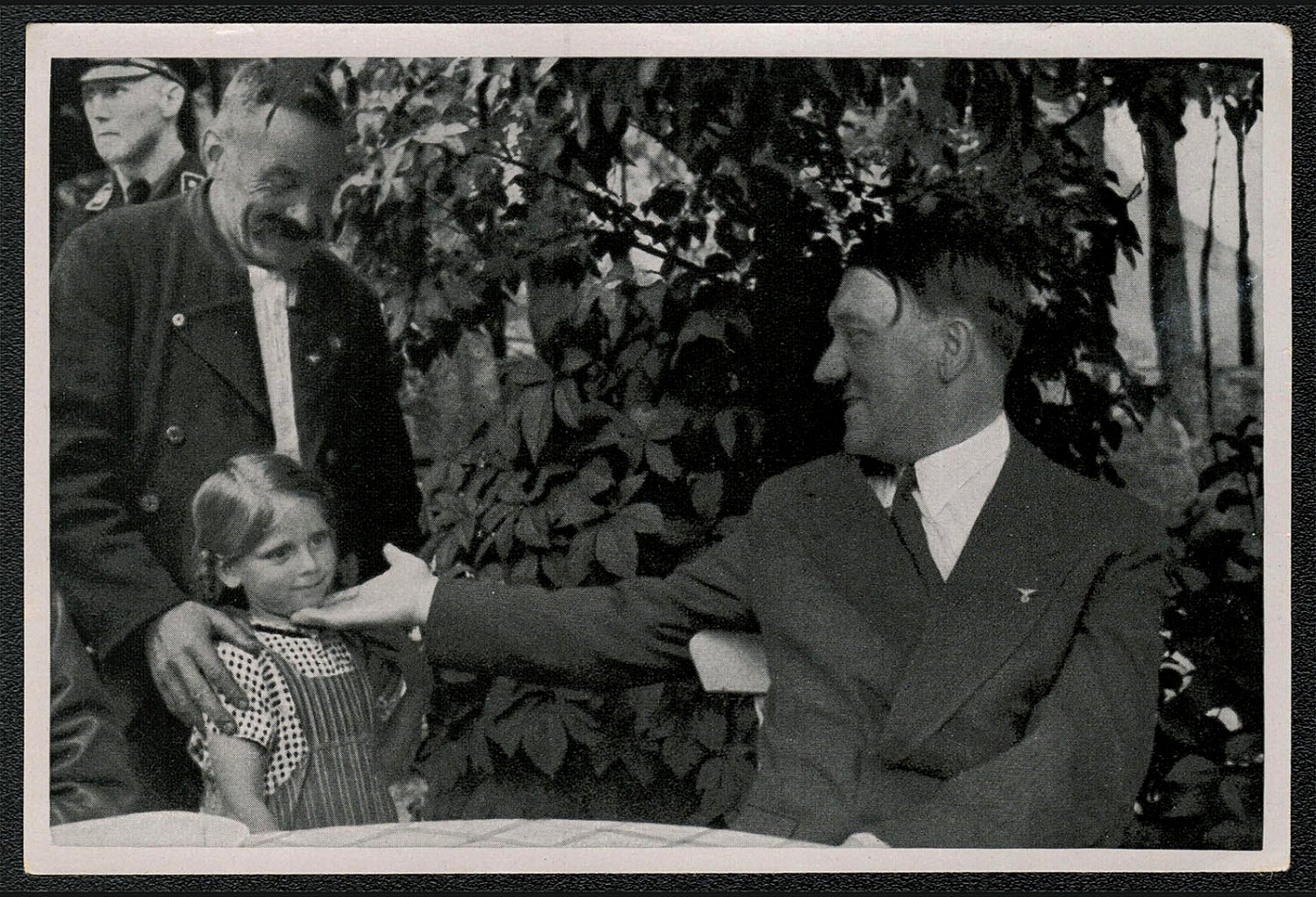
811
-
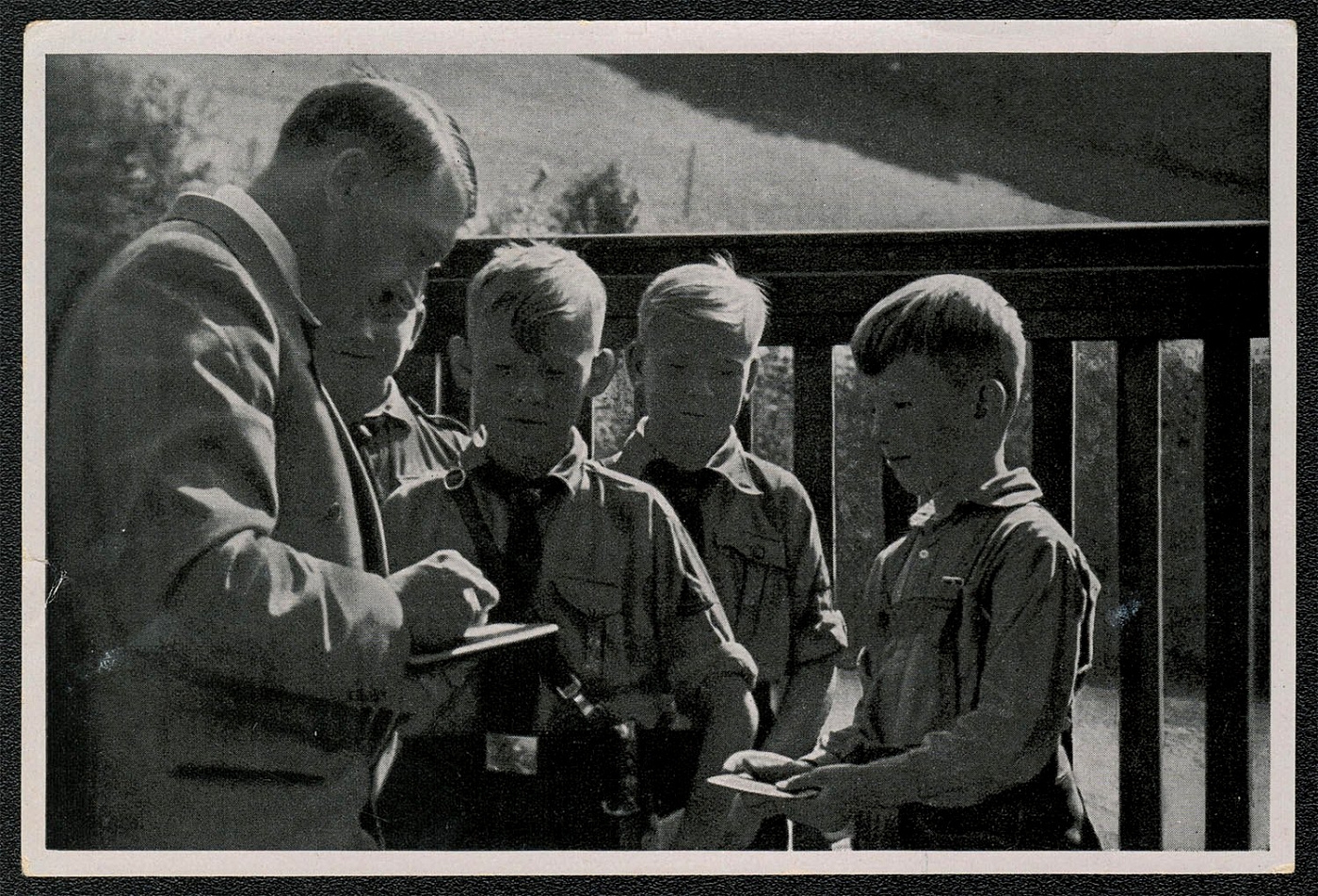
812
-
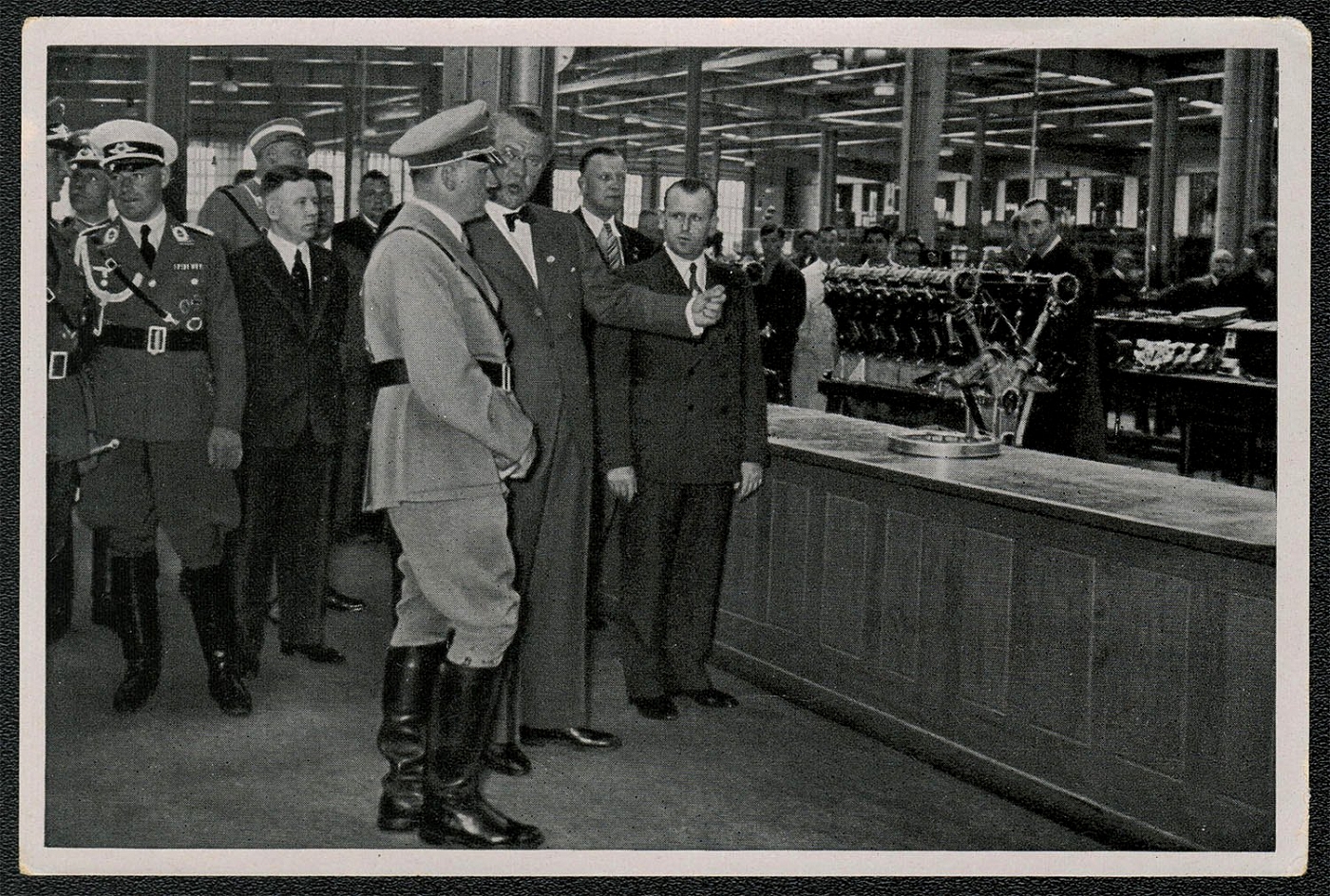
1933 A visit to the Bavarian Motor Works. Cigarette card
A visit to the Bavarian Motor Works.
Unsold
813
-
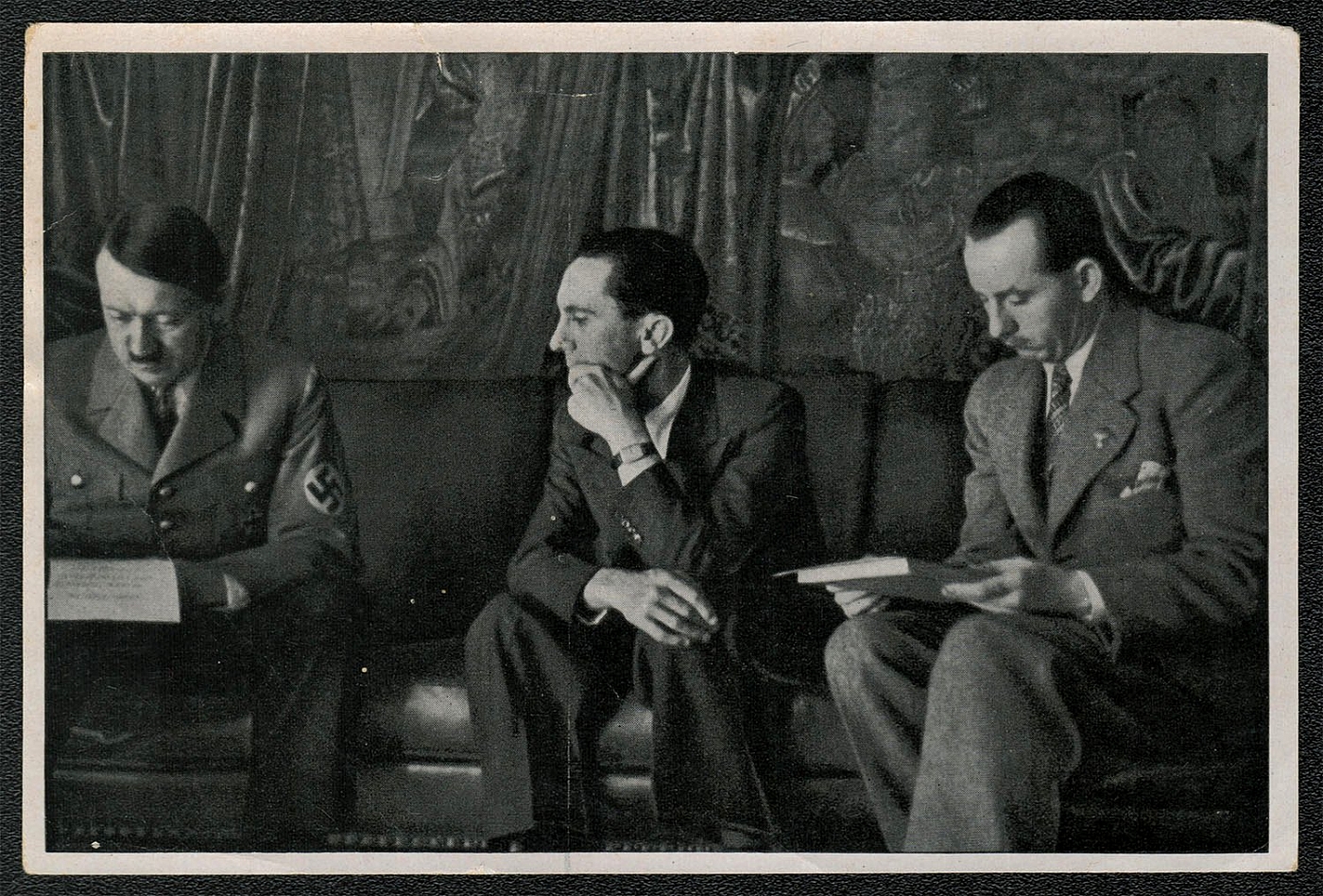
814
-
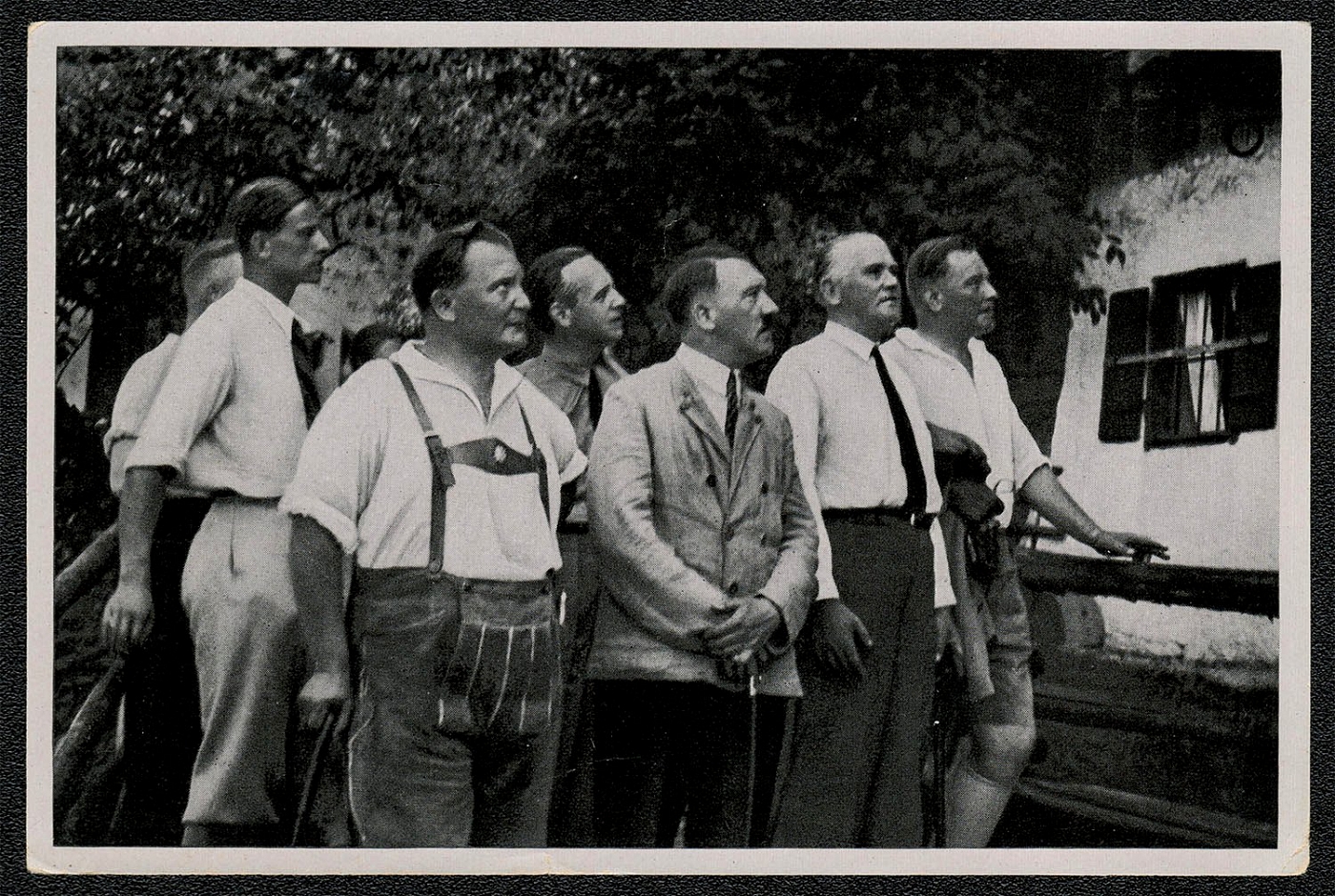
1933 Fuhrer's summer vacation at the feudal bridge near Berchtesgaden where Dietrich Eckart lived for a time during 1923. Cigarette card
Fuhrer's summer vacation at the feudal bridge near Berchtesgaden where Dietrich Eckart lived for a time during 1923.
Unsold
815
-
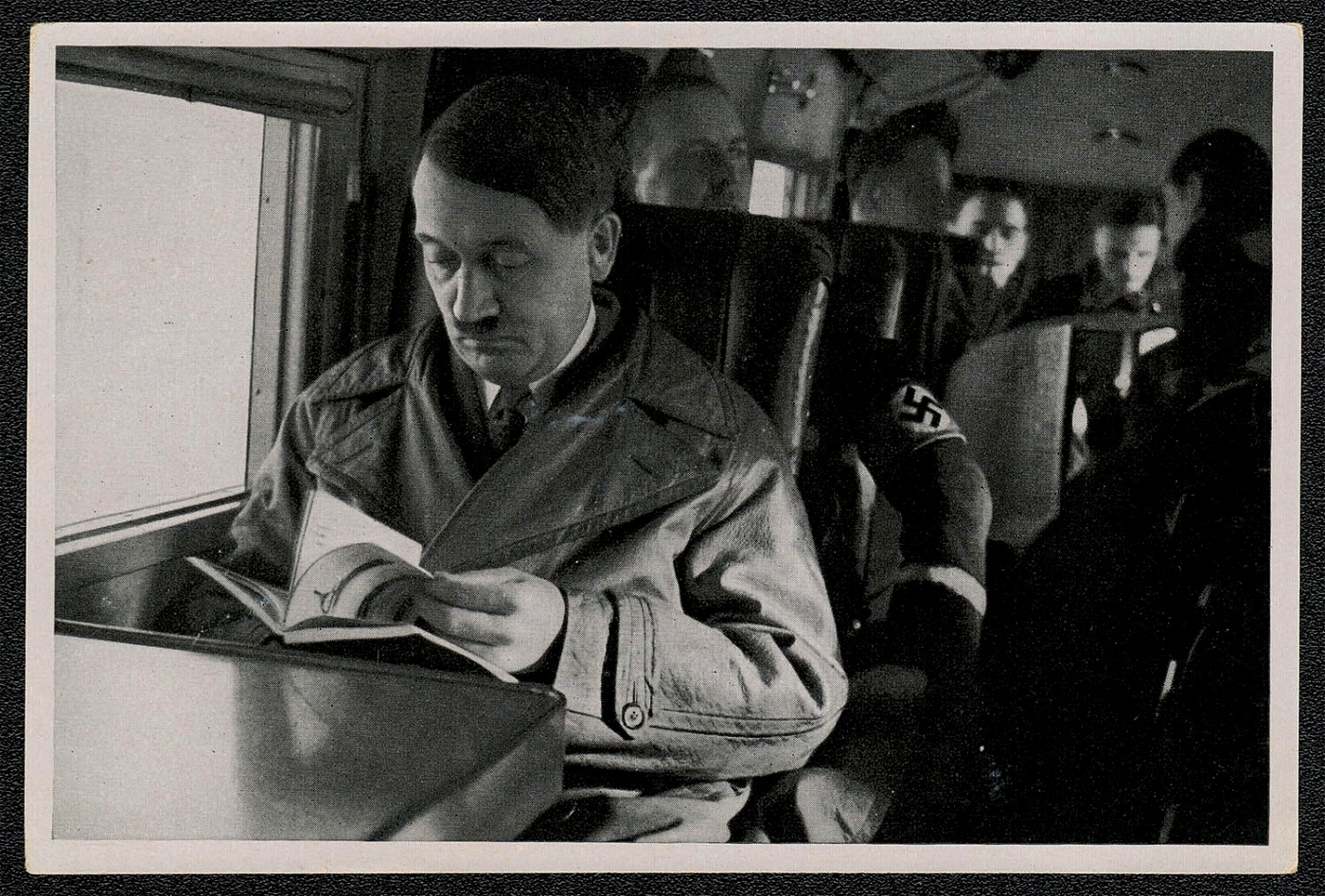
816
-
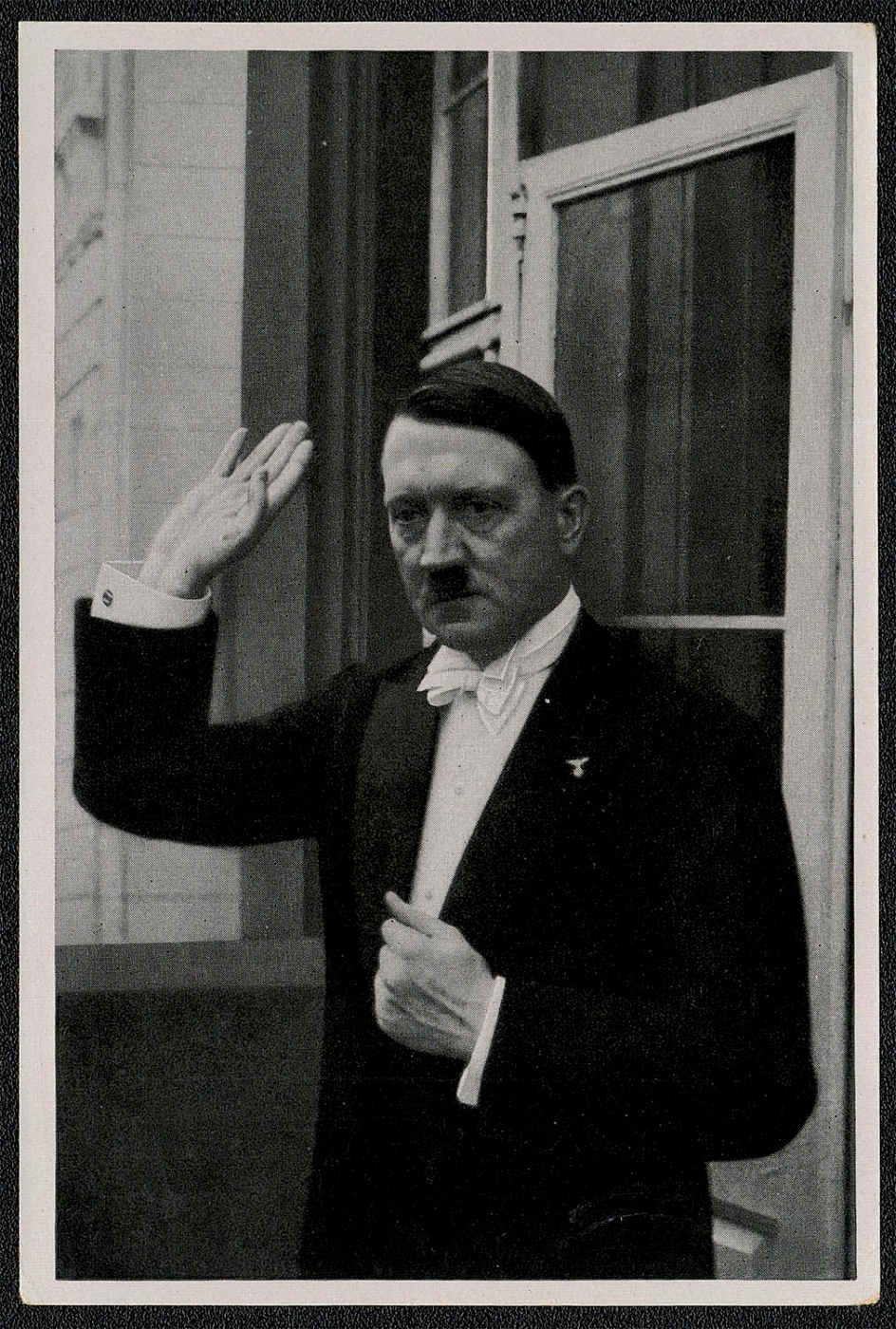
1933 Following the New Year’s Diplomatic Reception. Cigarette card
Following the New Year’s Diplomatic Reception.
Unsold
817
-
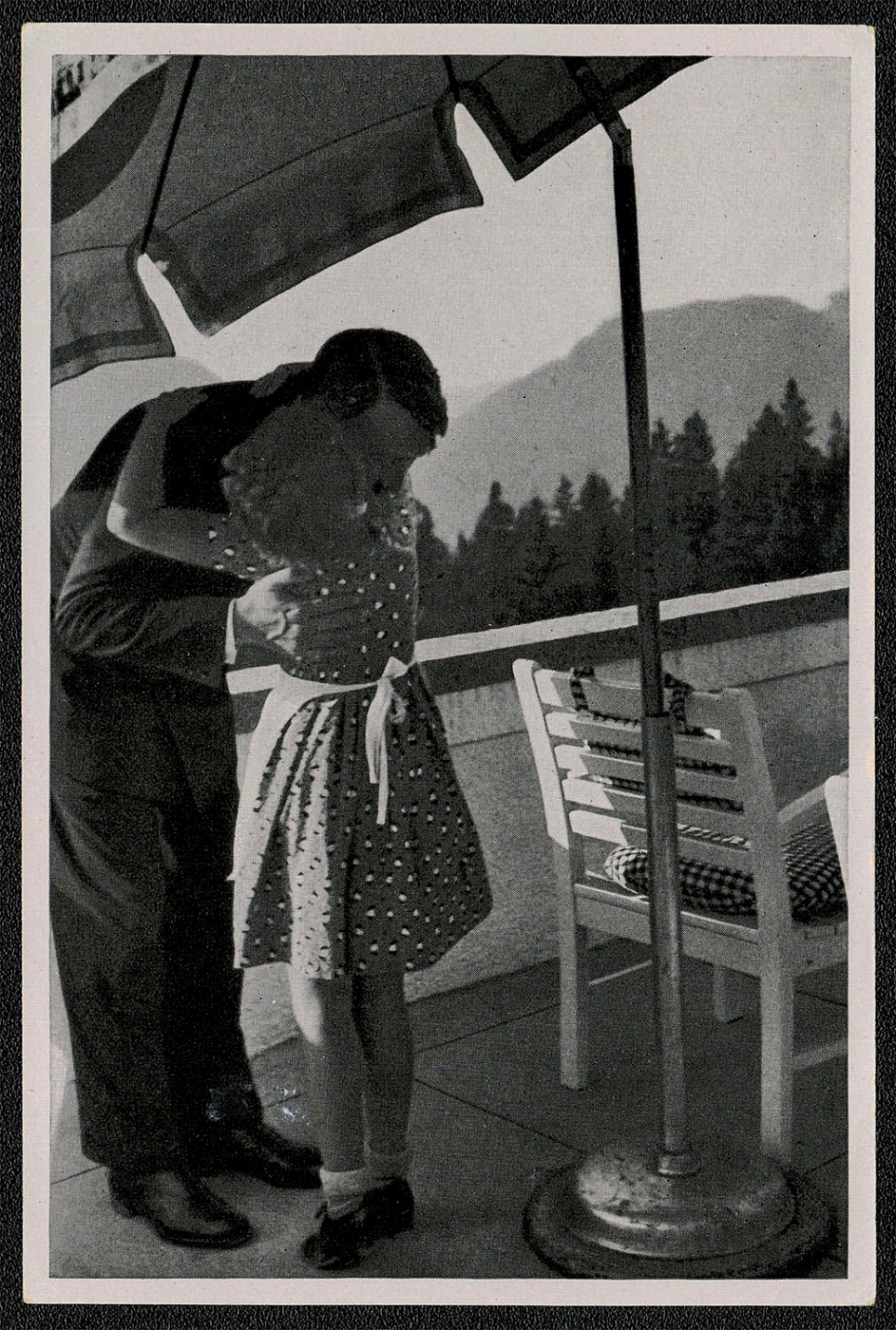
1933 A little girl visits the Fuhrer on the Obersalzberg. Cigarette card
A little girl visits the Fuhrer on the Obersalzberg.
Unsold
818
$35
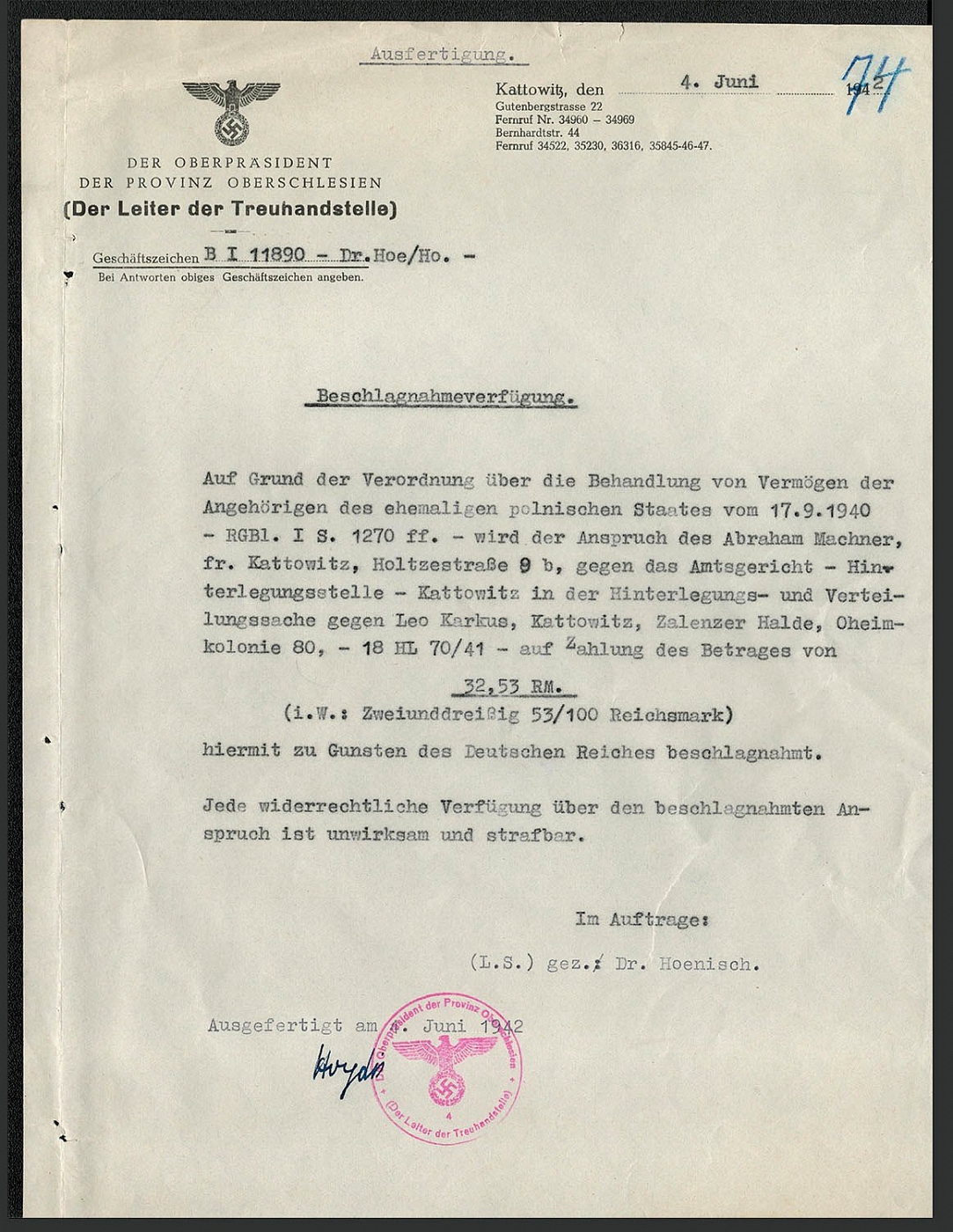
1942 Confiscation order. The head of the trust agency Province of Upper Silesia
1942 Confiscation order. The head of the trust agency Province of Upper Silesia
Sold for:
$35
819
$20
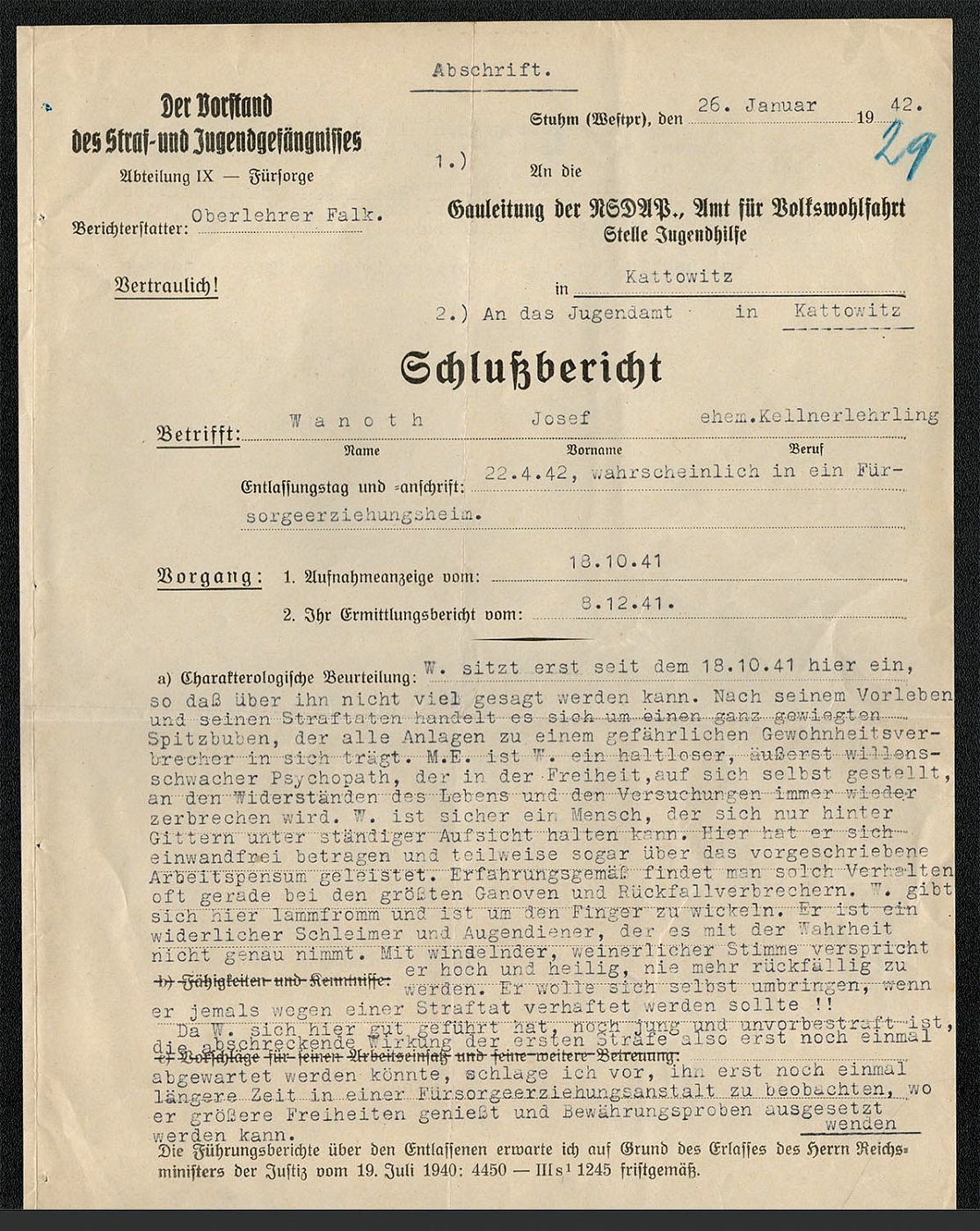
820
-
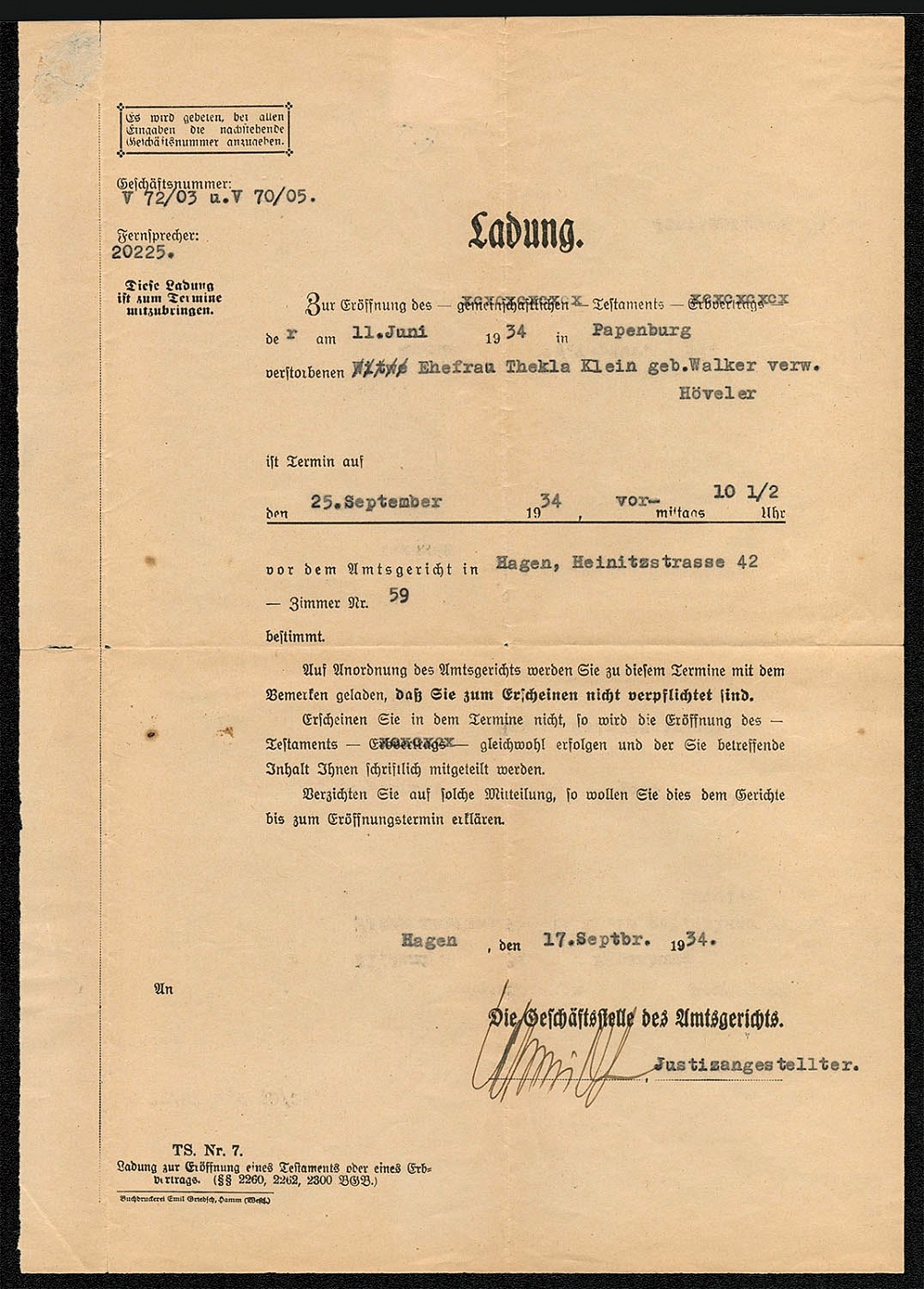
821
$12
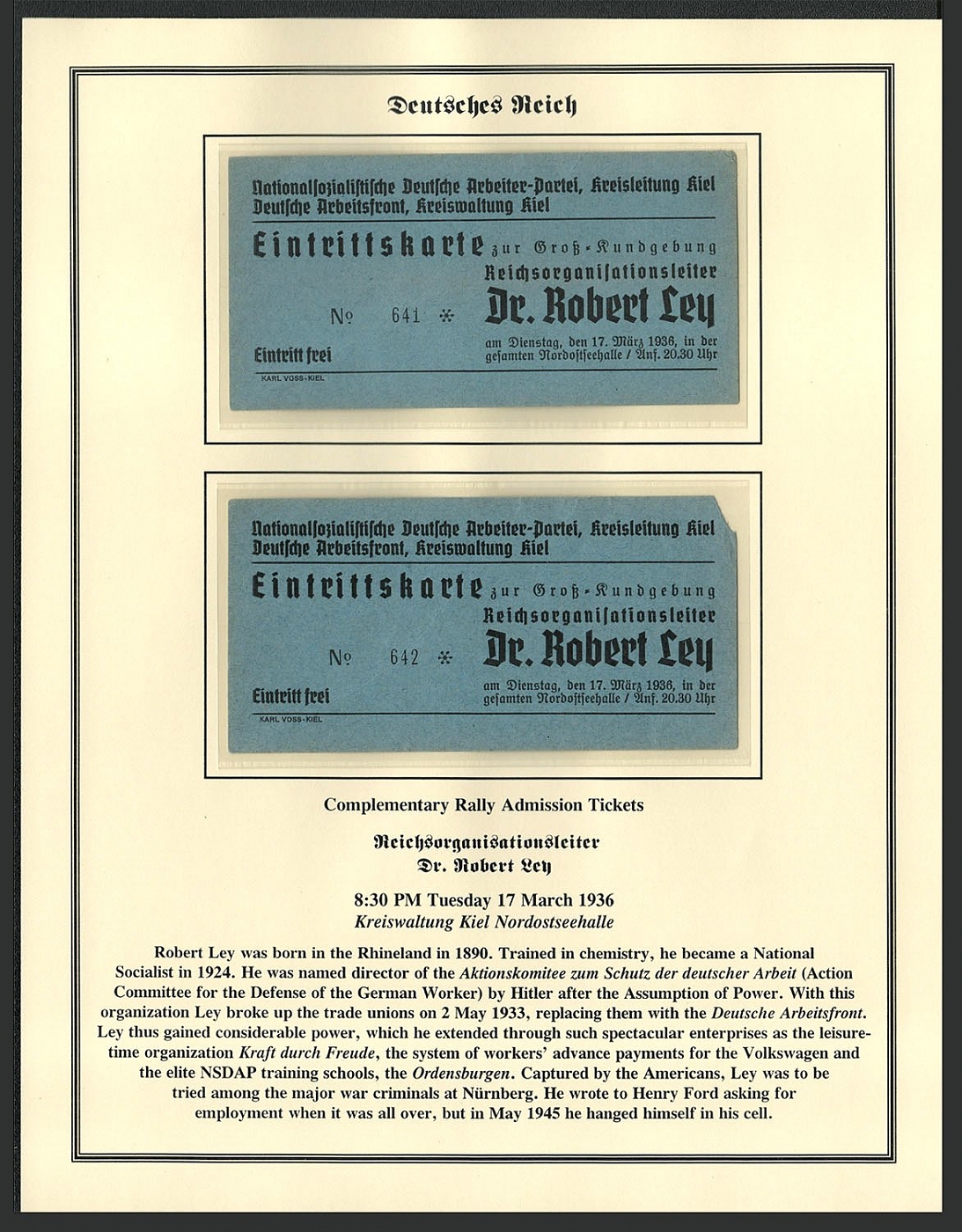
1936 Complementary Rally Admission Tickets
Robert Ley was born in the Rhineland in 1890. Trained in chemistry, he became a National Socialist in 1924. He was named director of the Aktionskomitee zum Schutz der deutscher Arbeit (Action Committee for the Defense of the German Worker) by Hitler after the Assumption of Power. With this organization Ley broke up the trade unions on 2 May 1933, replacing them with the Deutsche Arbeitsfront. Ley thus gained considerable power, which he extended through such spectacular enterprises as the leisuretime organization Kraft durch Freude, the system of workers’ advance payments for the Volkswagen and the elite NSDAP training schools, the Ordensburgen. Captured by the Americans, Ley was to be tried among the major war criminals at Niirnberg. He wrote to Henry Ford asking for employment when it was all over, but in May 1945 he hanged himself in his cell.
Sold for:
$12
822
$25
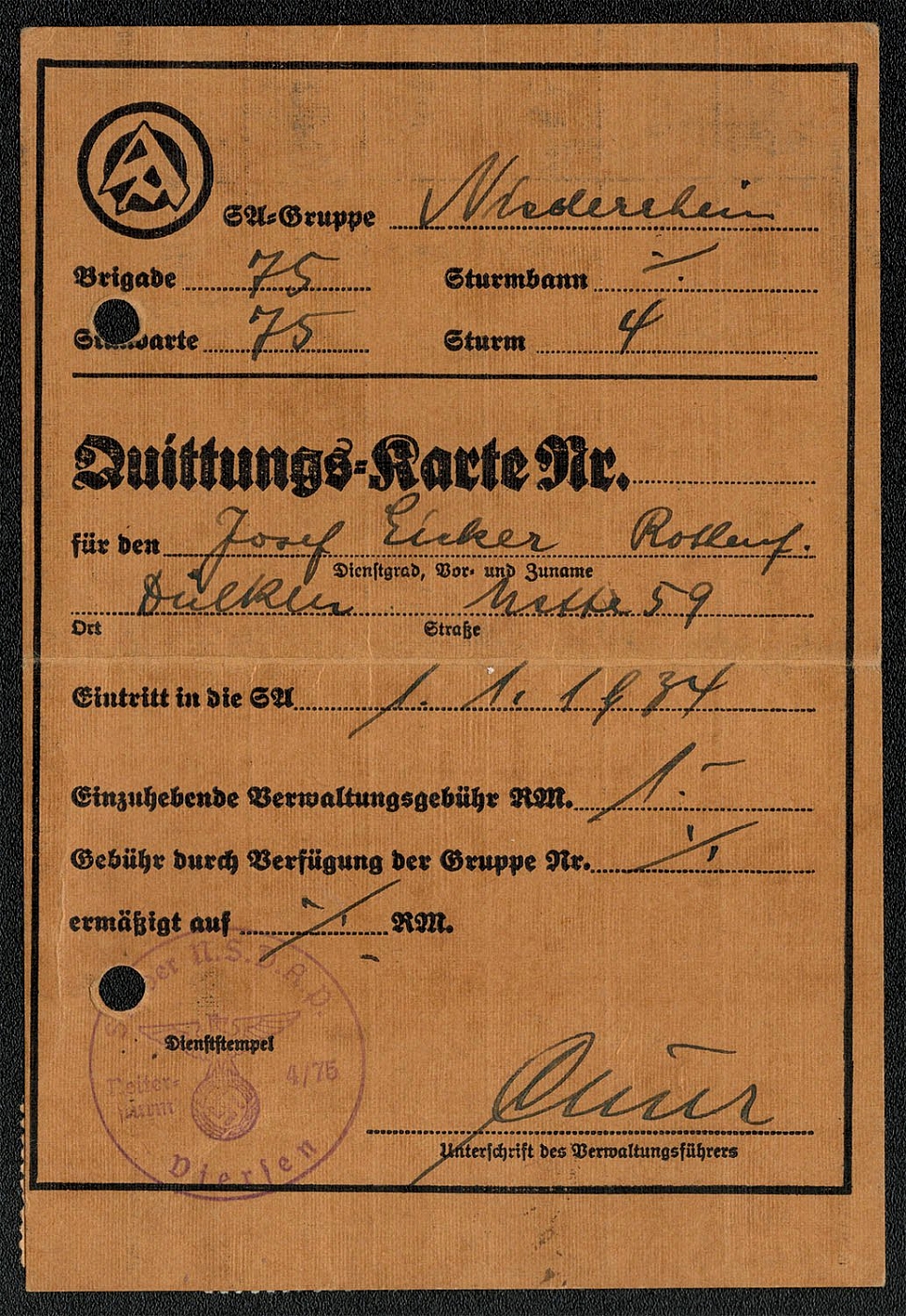
1938 Storm Division receipt card
Sturmabteilung receipt card for 1 April 1937 - 31 March 1938 issued to Rottenfuhrer Josef Eicker, SA. Gruppe Niederrhein, 75,h Brigade, 75,h Standarte. Note the 1937 Reichsparteitag stamp as well as the Party dues stamps.
Sold for:
$25
823
$10

1937 Reich professional competition of the german youth
1937 Reich professional competition of the german youth
Sold for:
$10
824
$10
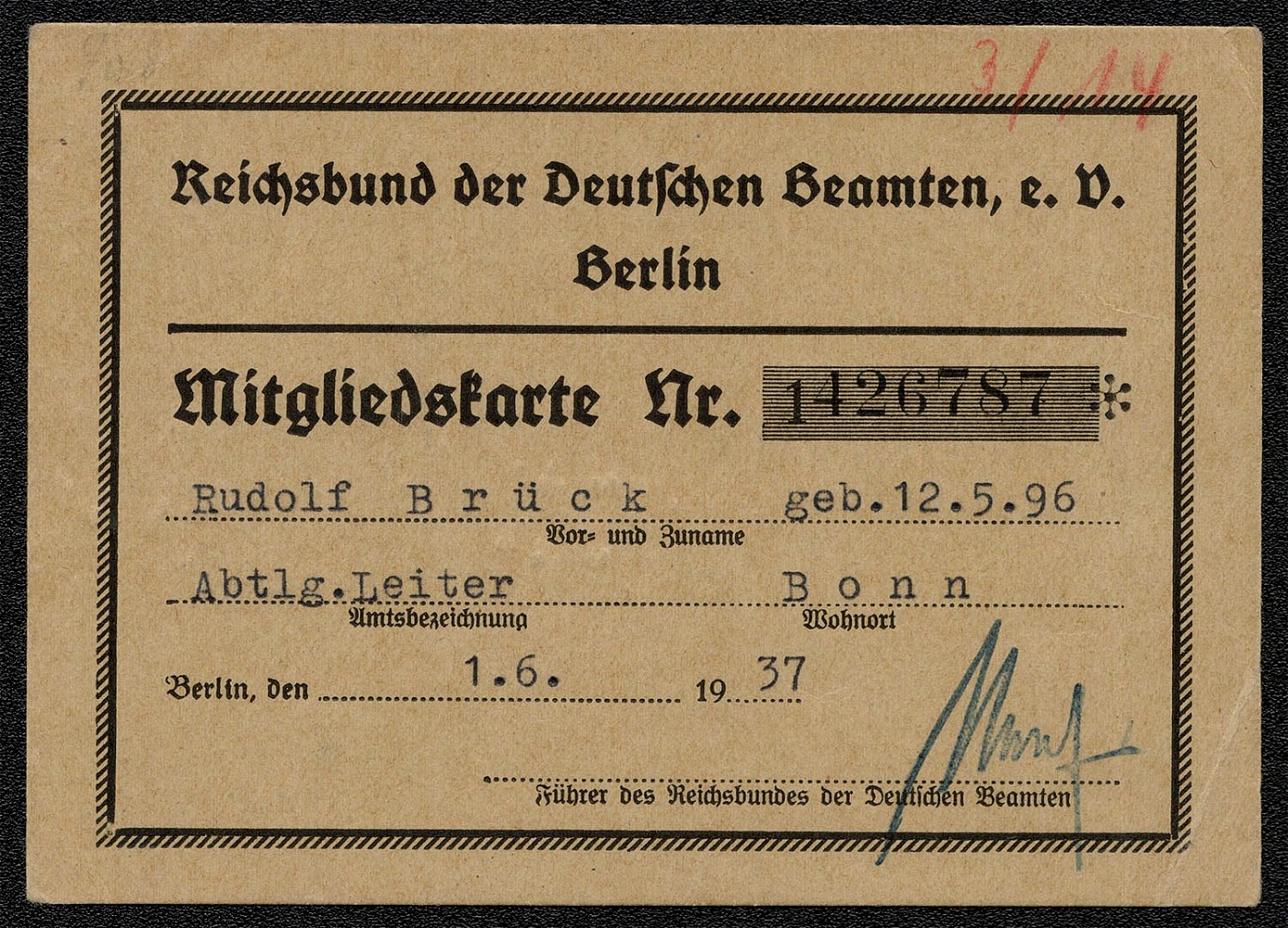
1937 A membership card issued to Rudolf Bruck, a Department Leader in Bonn
1937 A membership card issued to Rudolf Bruck, a Department Leader in Bonn
Sold for:
$10
825
$10
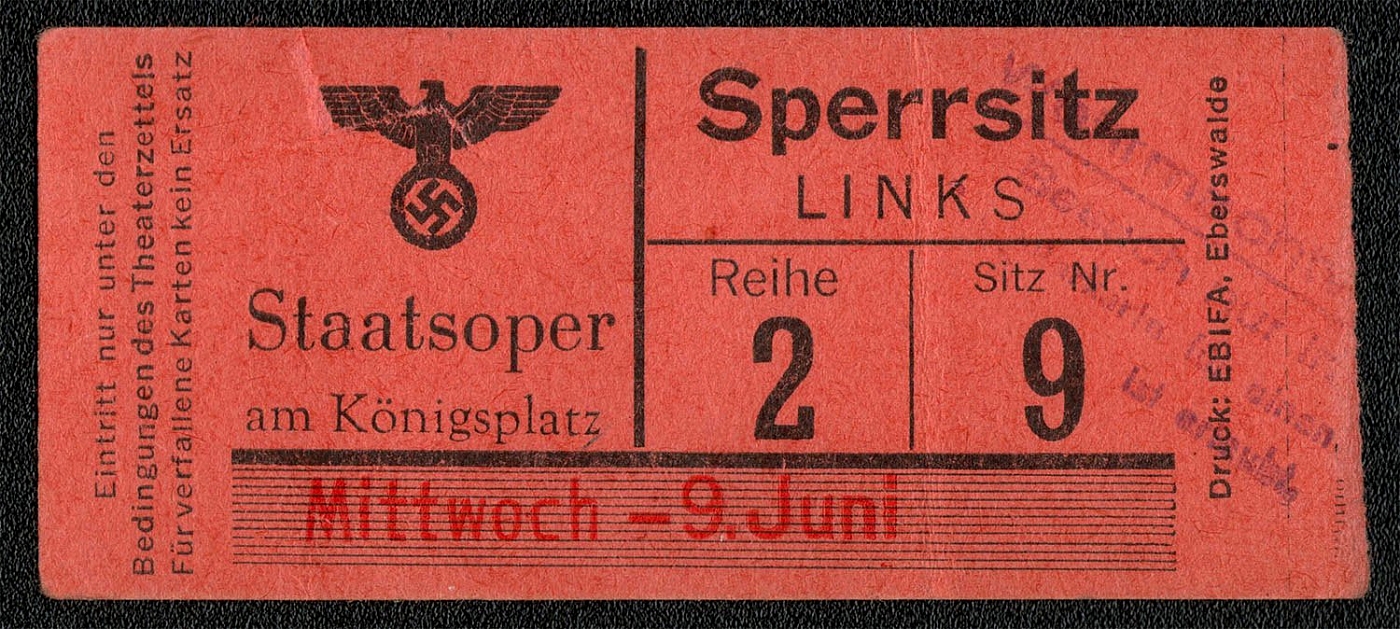
1937 Orchestra Stalls State Opera on the Konigsplatz. Ticket
Orchestra Stalls State Opera on the Konigsplatz Wednesday 9 June 1937
Sold for:
$10
826
$25
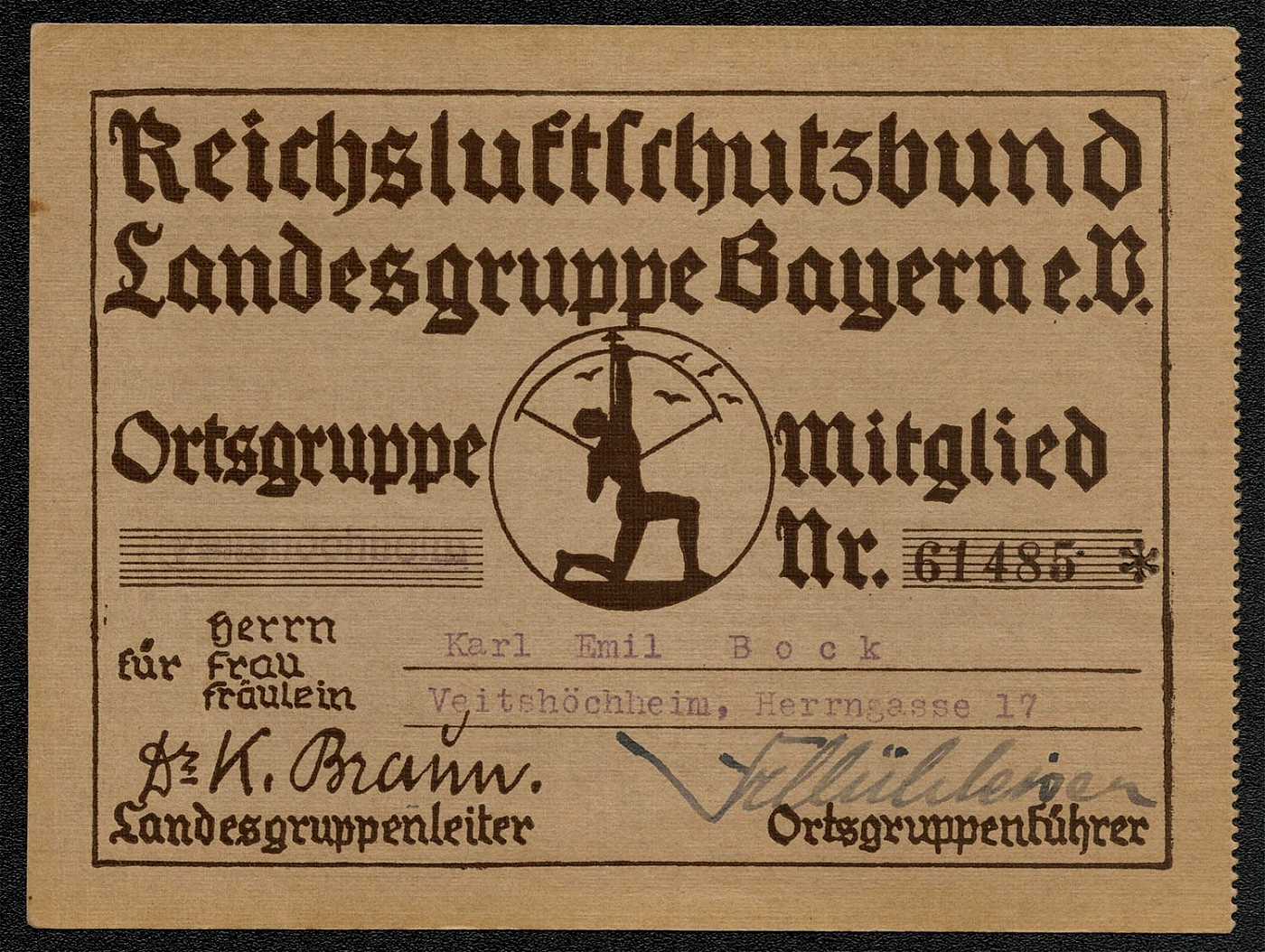
1937 The Reich Air Defense League Bavarian Regional Group Local Branch Membership
The Reich Air Defense League Bavarian Regional Group Local Branch Membership Nurnber 61485 for Herrn Karl Emil Bock Veitshochheim, Herrngasse 17 § The Reichsluftschutzbund (RLB) was founded 29 April 1933 and was accountable to the Reich Ministry for Air Travel and the Supreme Commander of the Luftwaffe. It was responsible for the training of volunteer “air defense watchers” (Luftschutzwarte) for residential blocks and individual apartment buildings. The Air Defense Law of 26 May 1935 introduced a service requirement (Luftschutzpflicht) for all Germans. This included air raid alarms, blackouts, firefighting, first aid, or clearing rubble, as well as a requirement concerning material provisions (such as constructing air defense spaces or supplying equipment). The reverse of Air Raid Warden Karl Emil Bock’s Reichsluftschutzbund membership card with endorsement stamps from 1933 through 1937. § When the war began, the Reichsluftschutzbund had over 13.5 million members, 820,000 officers, and 28,000 air defense teachers in 3,800 air defense schools, whose courses could be made obligatory for everyone, were instituted. Particular attention was given to workplace air defense (Werk-Luftschutz). § The Allied air war after 1942 demonstrated the narrow limits of air defense in a modern war. Many Reichsluftschutzbund members were killed in military service.
Sold for:
$25
827
$14
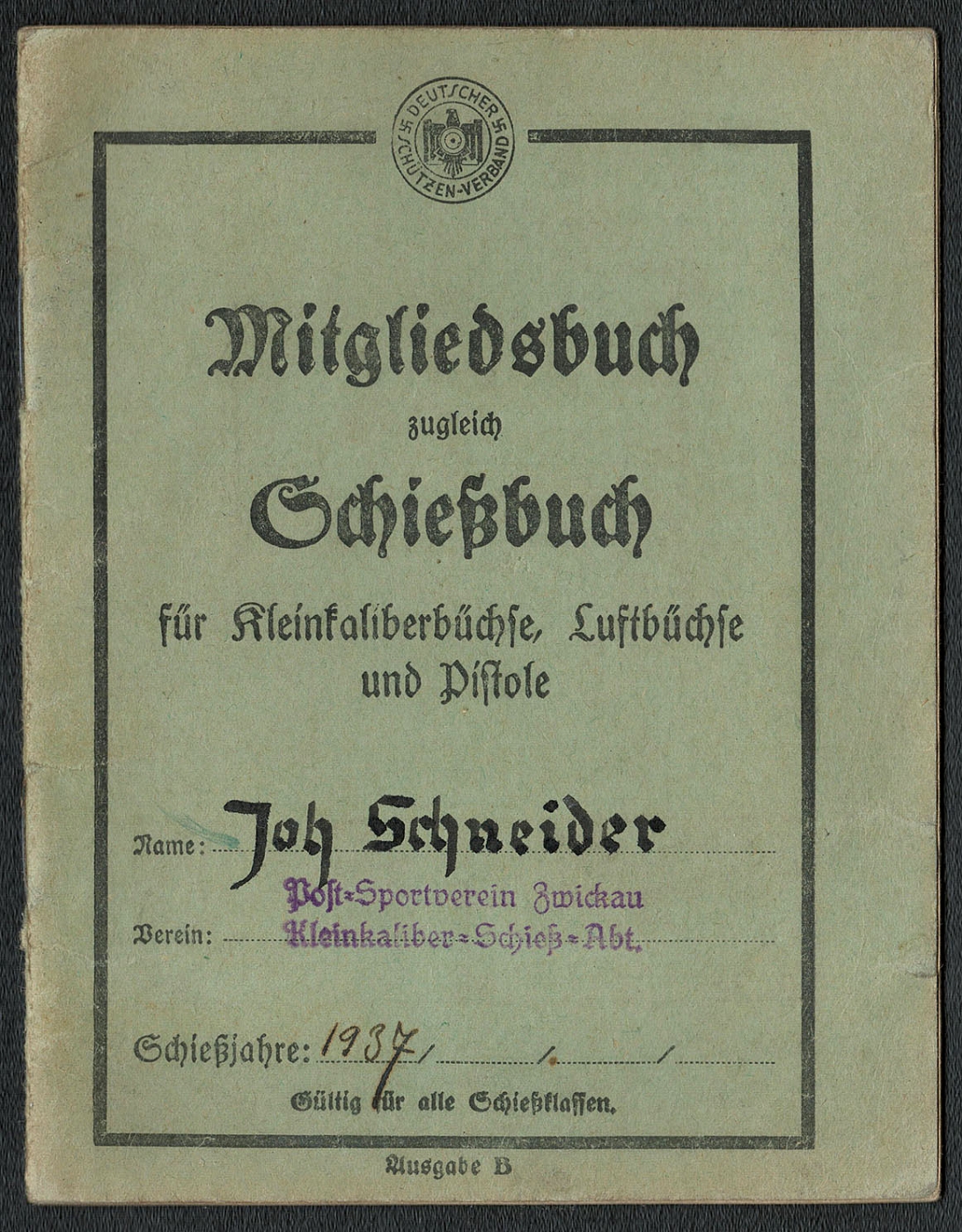
828
-
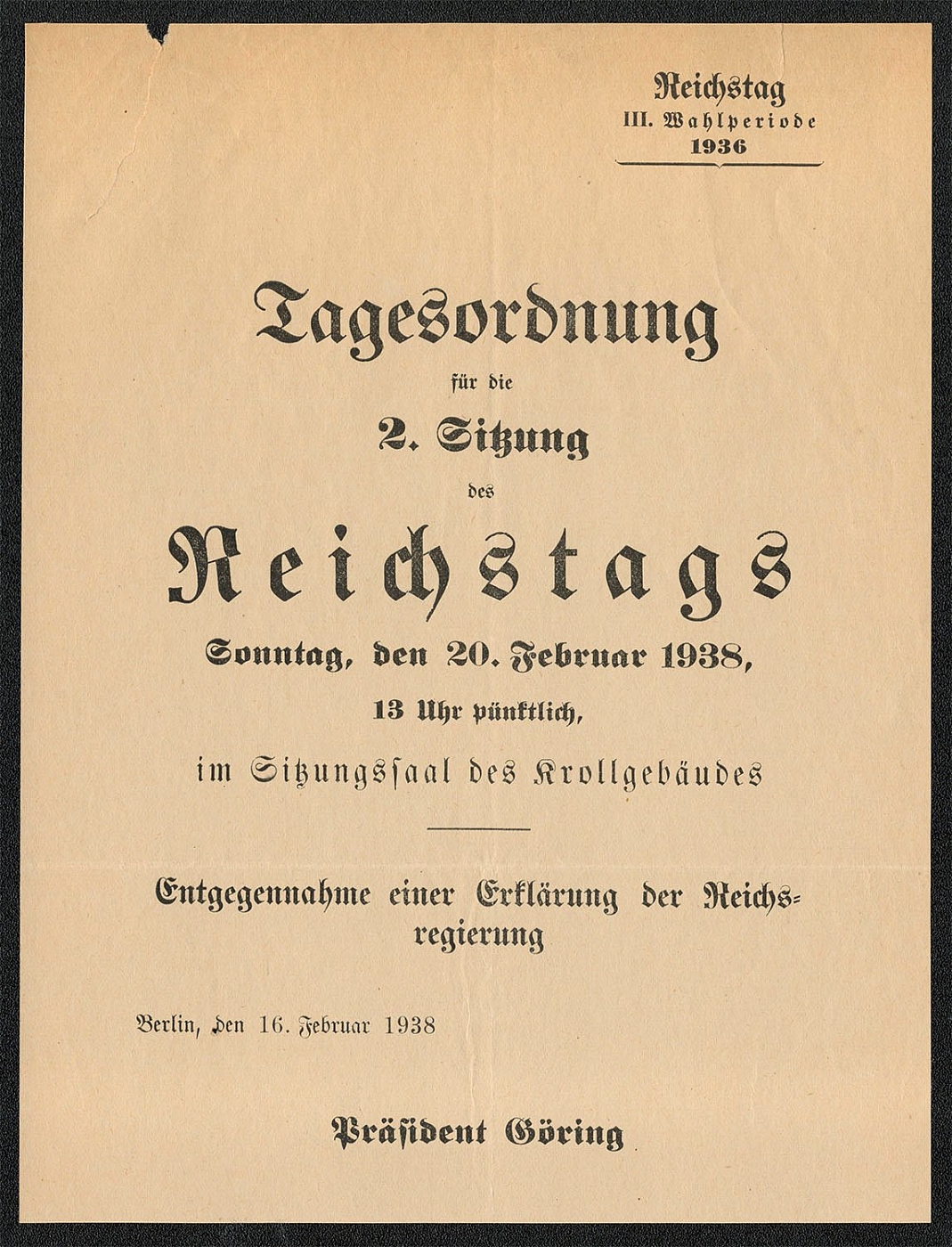
1937 Membership book for the session of the Reichstag
1937 Membership book for the session of the Reichstag
Unsold
829
-
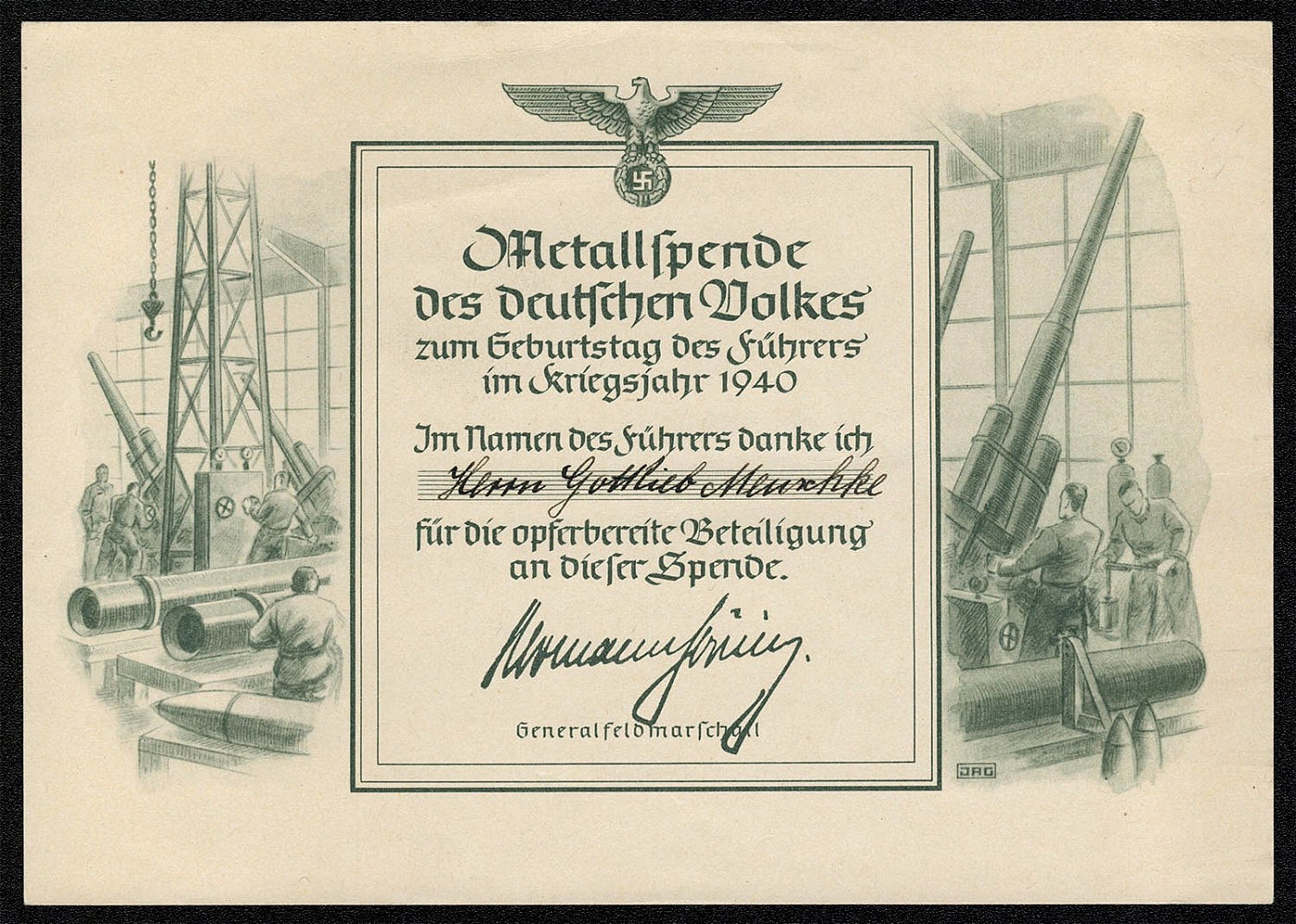
1940 Certificate for metalwork in the war effort awarded to Gottleib Menschke.
Certificate for metalwork in the war effort awarded to Gottleib Menschke. Given on behalf of the Fuhrer, and presented on the occasion of the Fuhrer’s birthday, 20 April 1940. Generalfeldmarshall
Unsold
830
$10
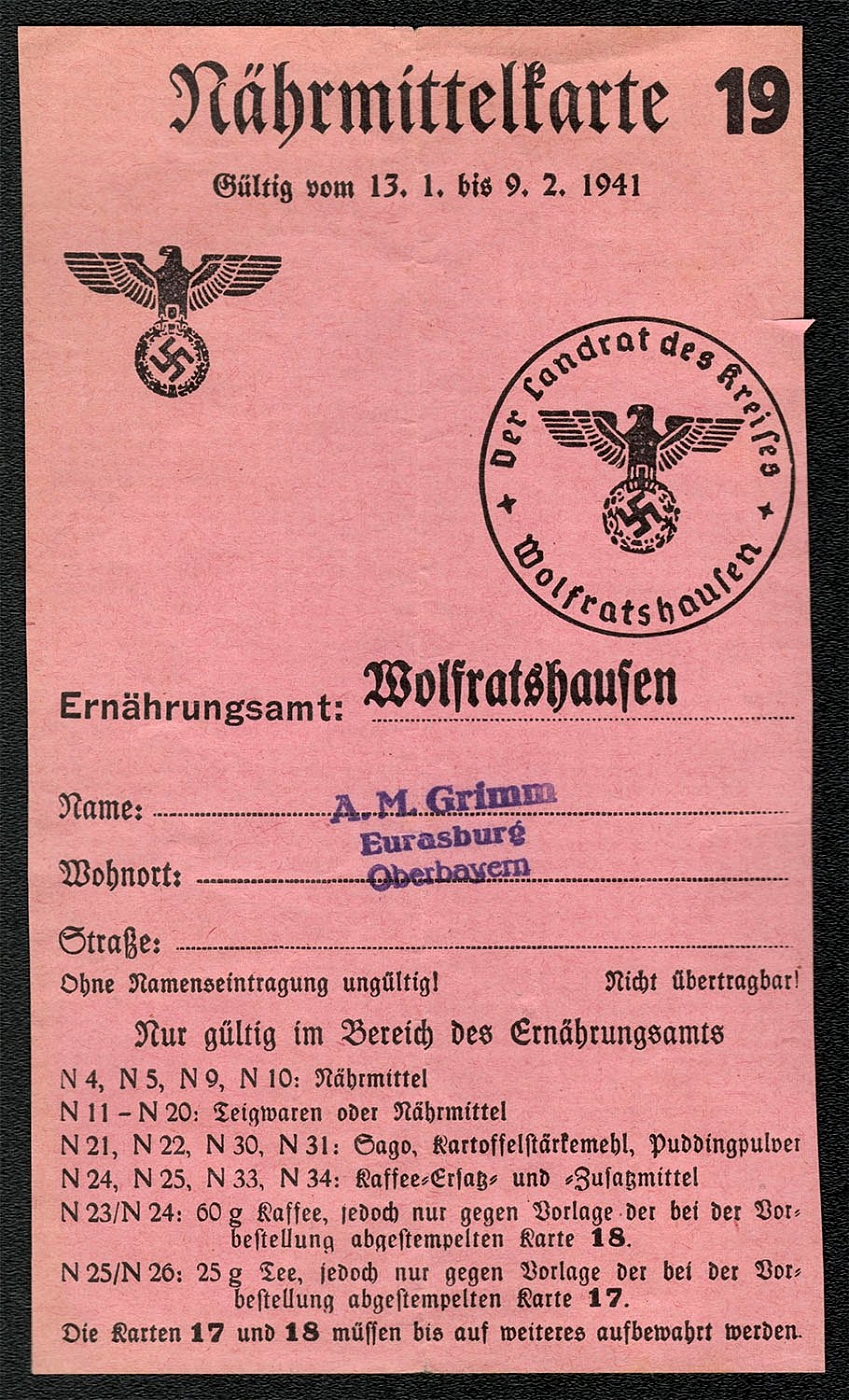
1941 Food Ration Card belonging to A.M. Grimm, Eurasburg, Oberbayern
Food Ration Card belonging to A.M. Grimm, Eurasburg, Oberbayern, Valid from 13 January through 9 February 1941 Issued by the Food Office at Wolfratshausen, a Bavarian town 27 kilometers sound of Munchen. Quoting from Baedeker’s Southern Germany, 1929 Edition . . . Fine view farther on of the Isar valley and the mountains. We descend through deep cuttings and along the slope of the Schlederleiten, with a view of the wide valley of the Isar, with its grey islets. Wolfratshausen (1893 ft.) railway restaurant, with bedrooms, 10 minutes east of the prettily situated village . . .
Sold for:
$10
831
-
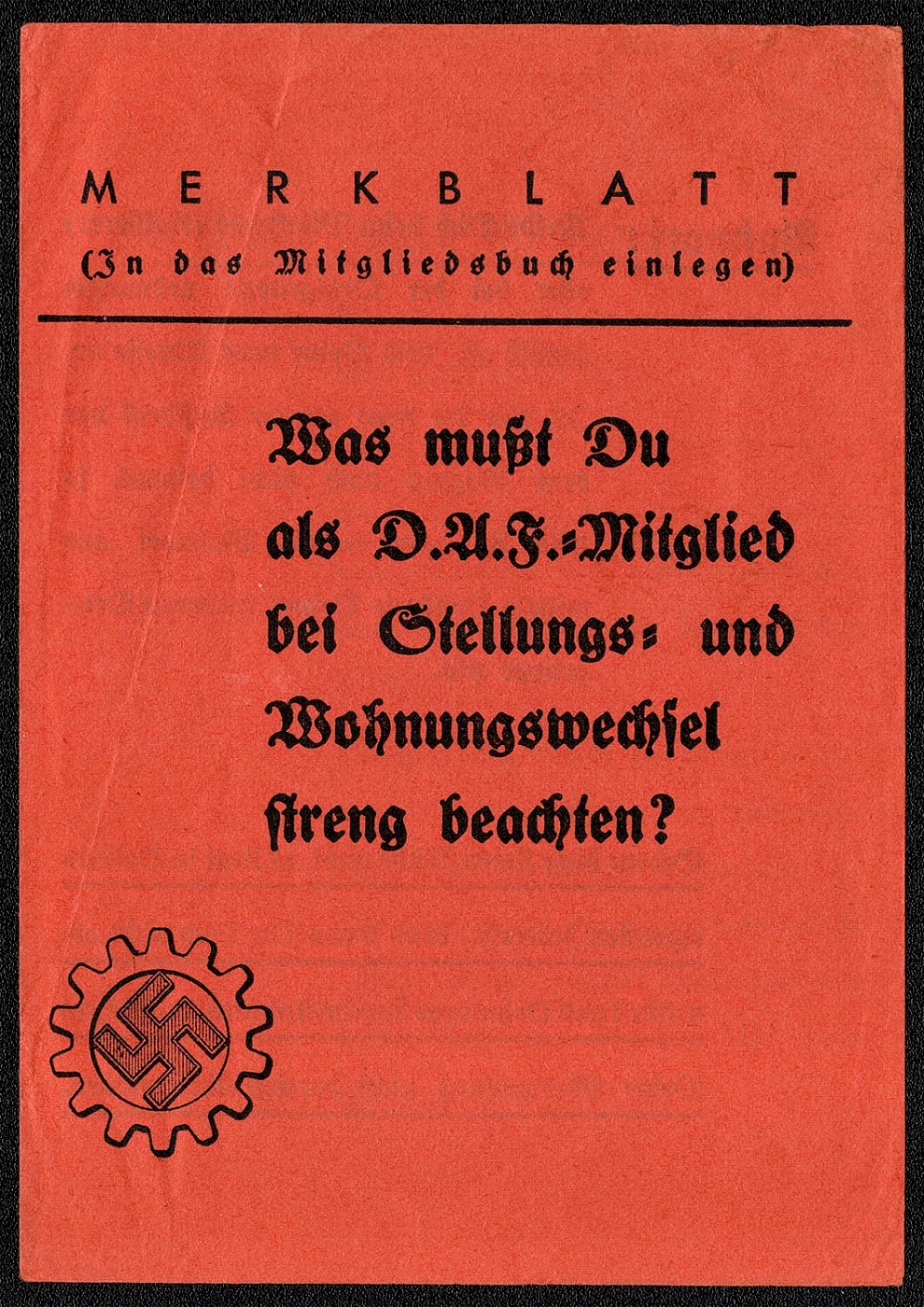
1942 D.A.F. Instruction Sheet to be inserted in the Members Book
D.A.F. Merkblatt (Instruction Sheet) to be inserted in the Mitgliedsbuch (Members Book). Members are asked if they are aware of the necessity of reporting a change of address. D.A.F. Merkblatt urges members to take further note of public assistance benefits for members who have been paid up since 1 November 1935.
Unsold
832
-
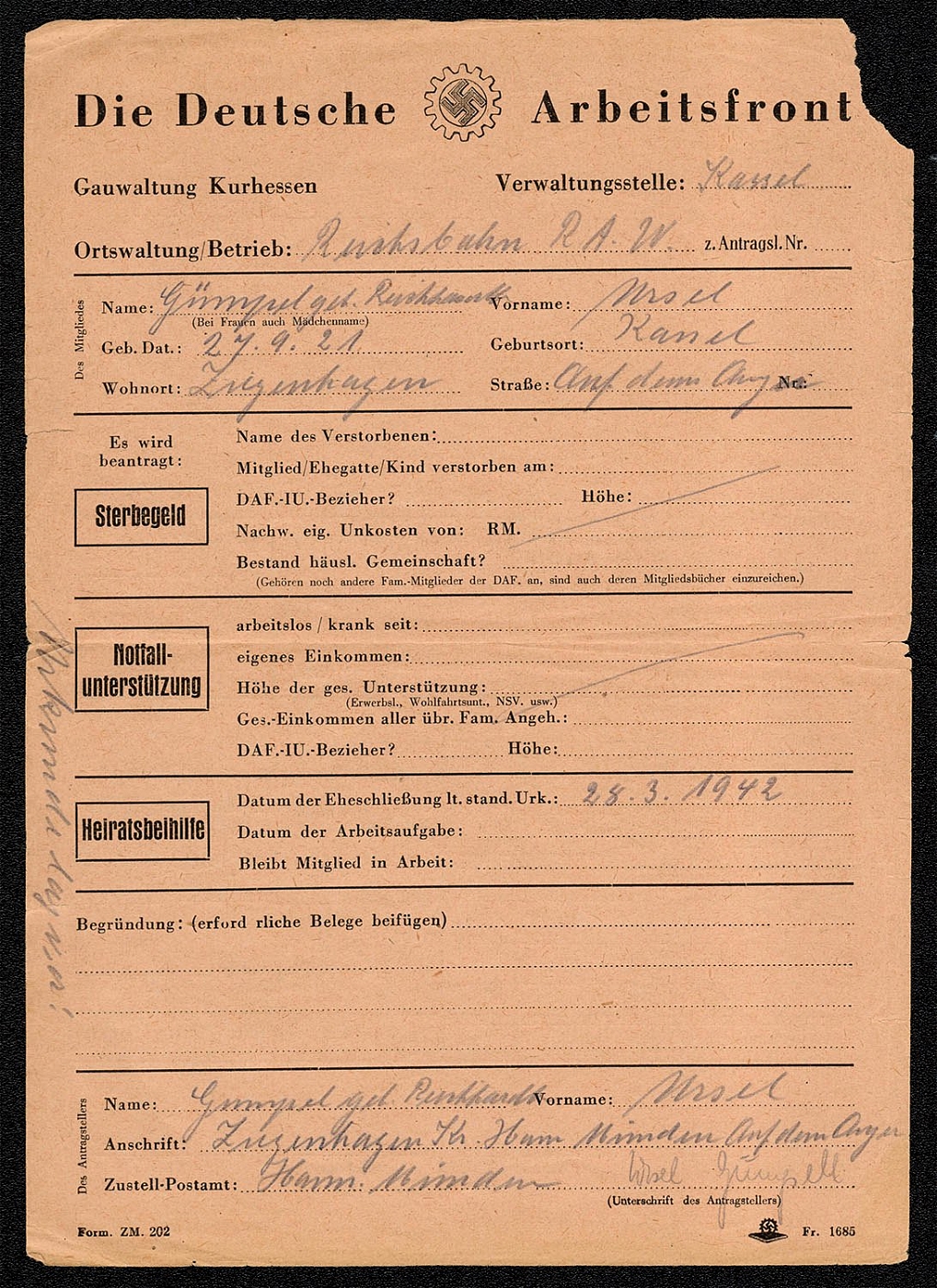
1942 Arbeitsfront papers dated 28 March 1942 from the District Authority
Arbeitsfront papers dated 28 March 1942 from the District Authority, Electorate of Hesse, Kassel Administration Agency for Frau Ursel Giimpel, nee Reishhansorlf (?) born 24 September 1921 in Kassel, an employee of the Reichsbahn (National Railroad).
Unsold
833
-
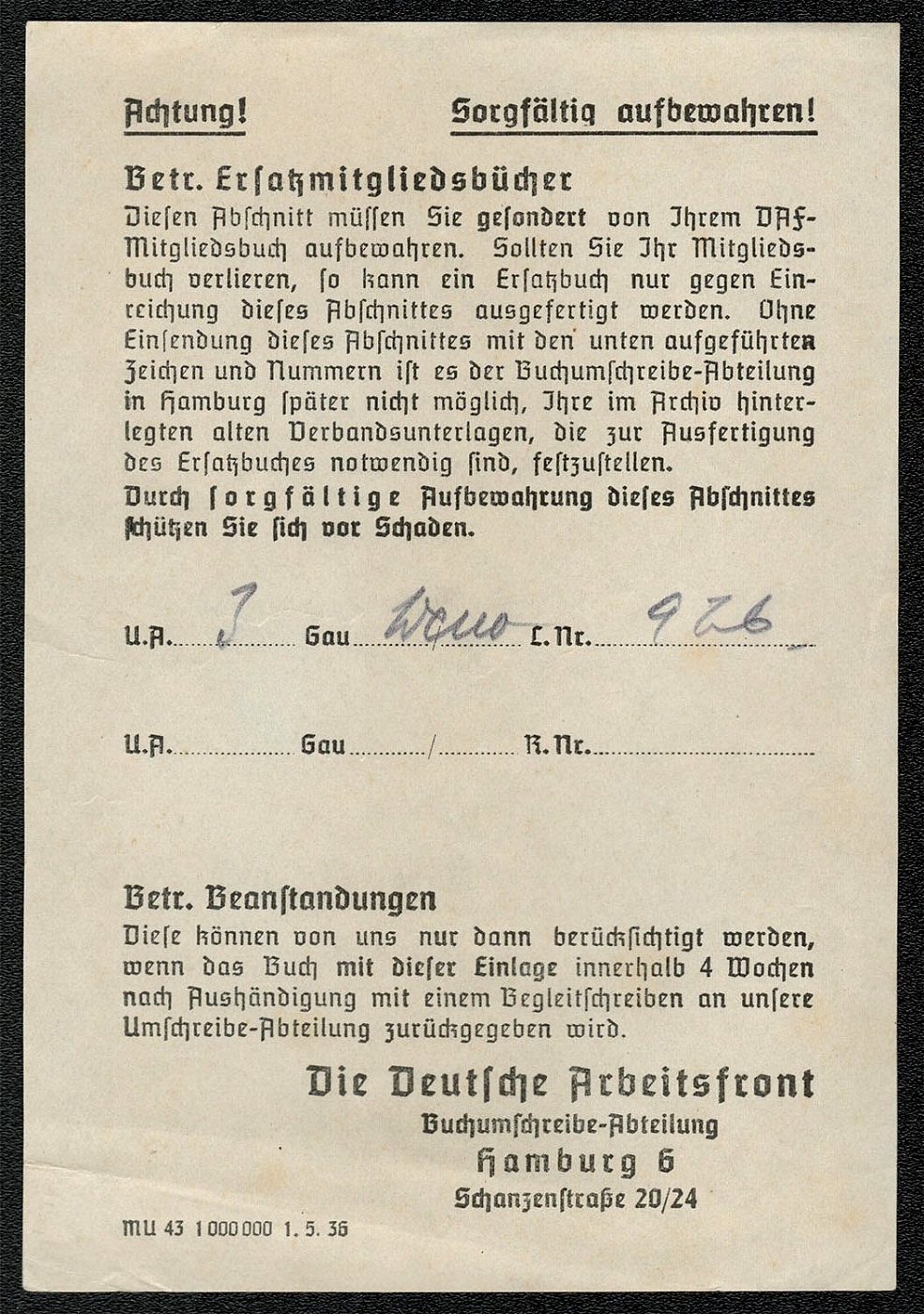
1942 Form for a replacement D.A.F Member’s Work Notebook
Attention! Strictly Enforced! Form for a replacement D.A.F Member’s Work Notebook. Issued by the Hamburg 6 office. This undated, incomplete form was originally printed 1 May 1936.
Unsold
834
-
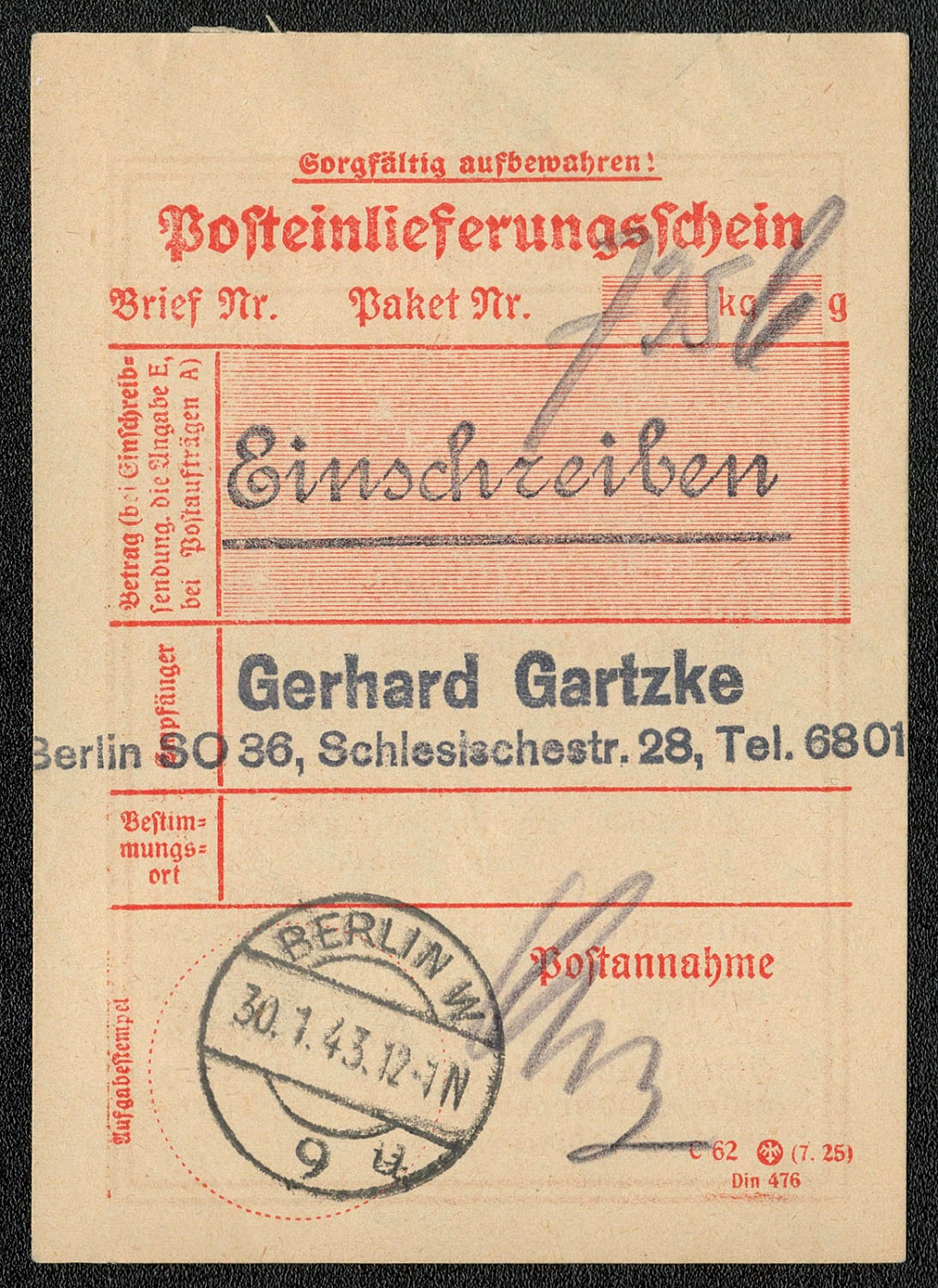
835
-
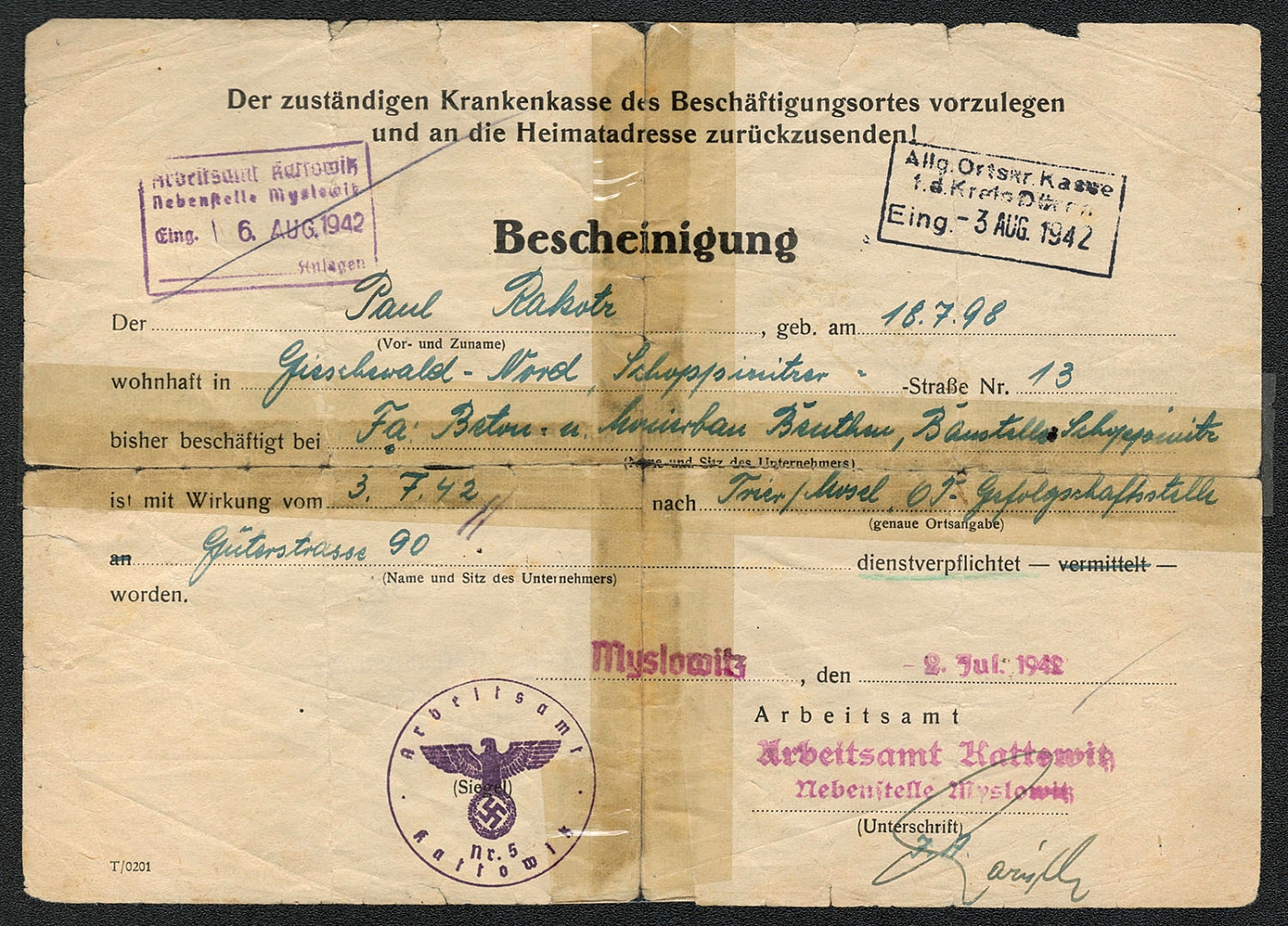
836
-
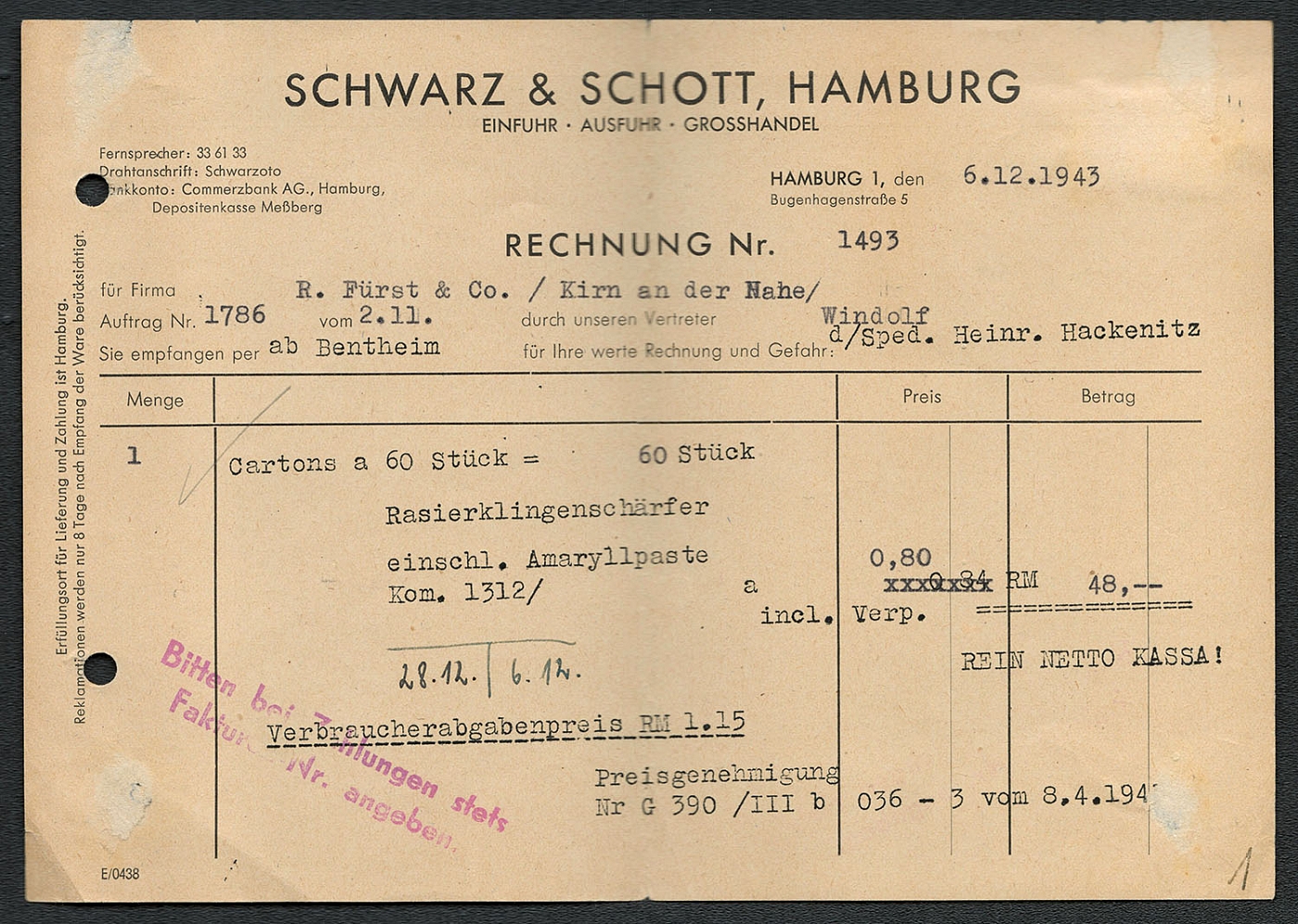
1943 Bill. Schwarz and Schott company.
1943 Bill. Schwarz and Schott company. Import export wholesale
Unsold
837
-
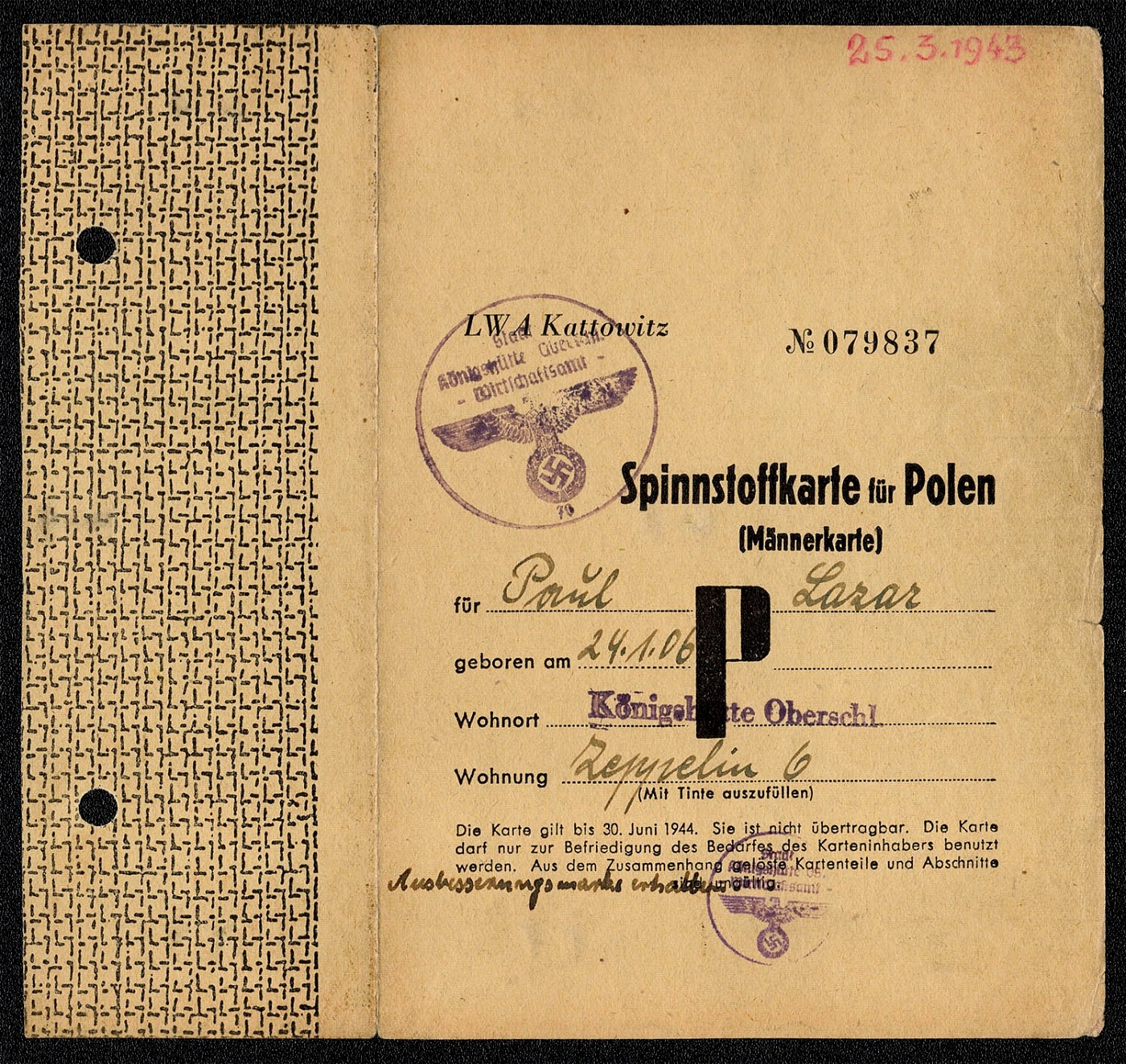
1943 Punch card from the Management Office
Punch card from the Konigshutte Oberschl. Management Office Spun Cloth for Poland (Men’s Card) Issued 25 March 1943 to Paul Lazar Born 24 January 1906 Residing in Konigshutte Oberschl. Apartment Zeppelin 6 Kattowitz
Unsold
838
-
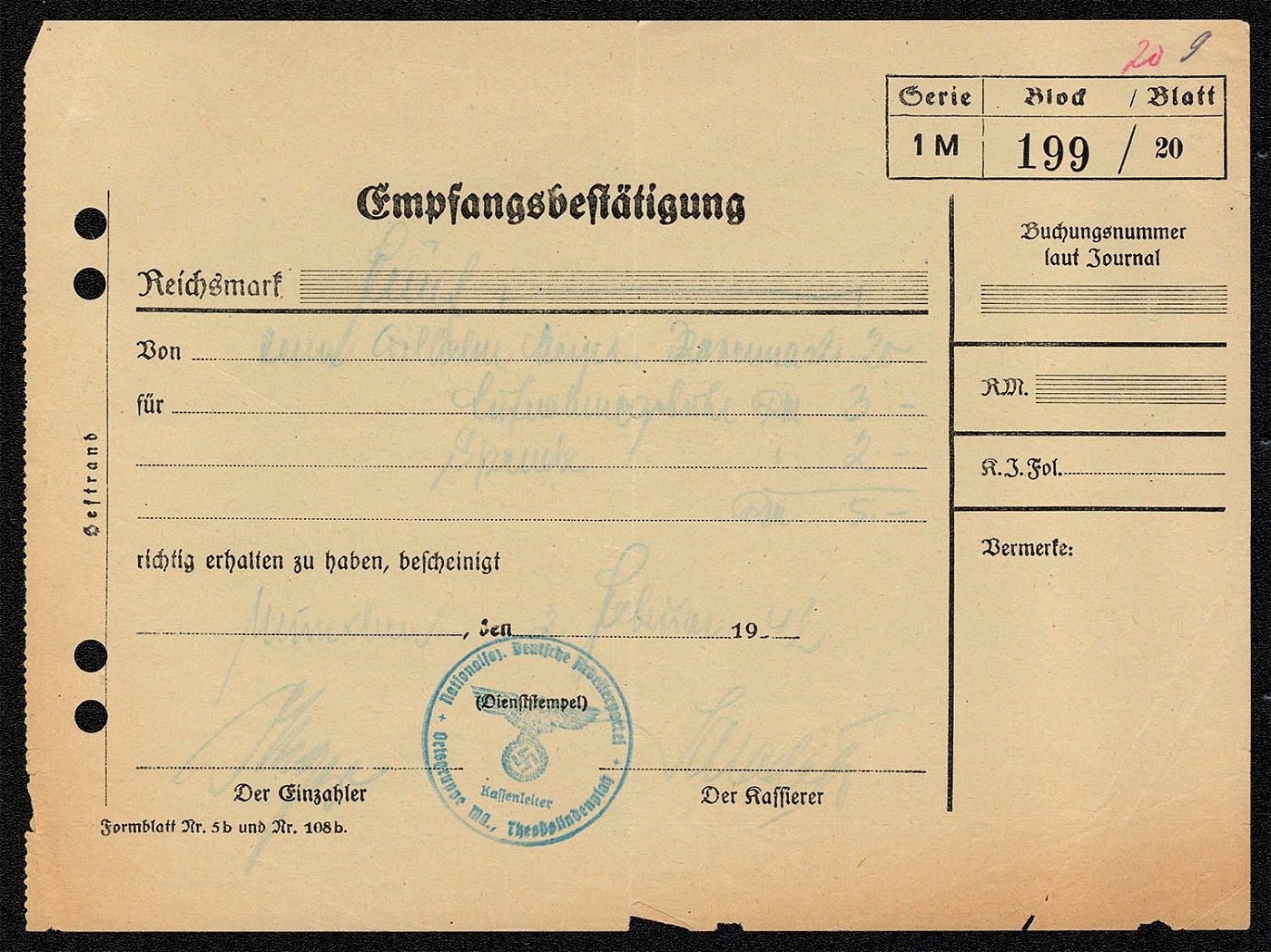
1943 Acknowledgement of Receipt of 5 Reichsmark
Acknowledgement of Receipt of 5 Reichsmark dated Munchen, 2 February 1943. Signed by the depositor and the cashier Officially Stamped: National Socialist German Workers Party Miinchen Local Group. Thesdalindenplatz Cash Manager
Unsold
839
$20
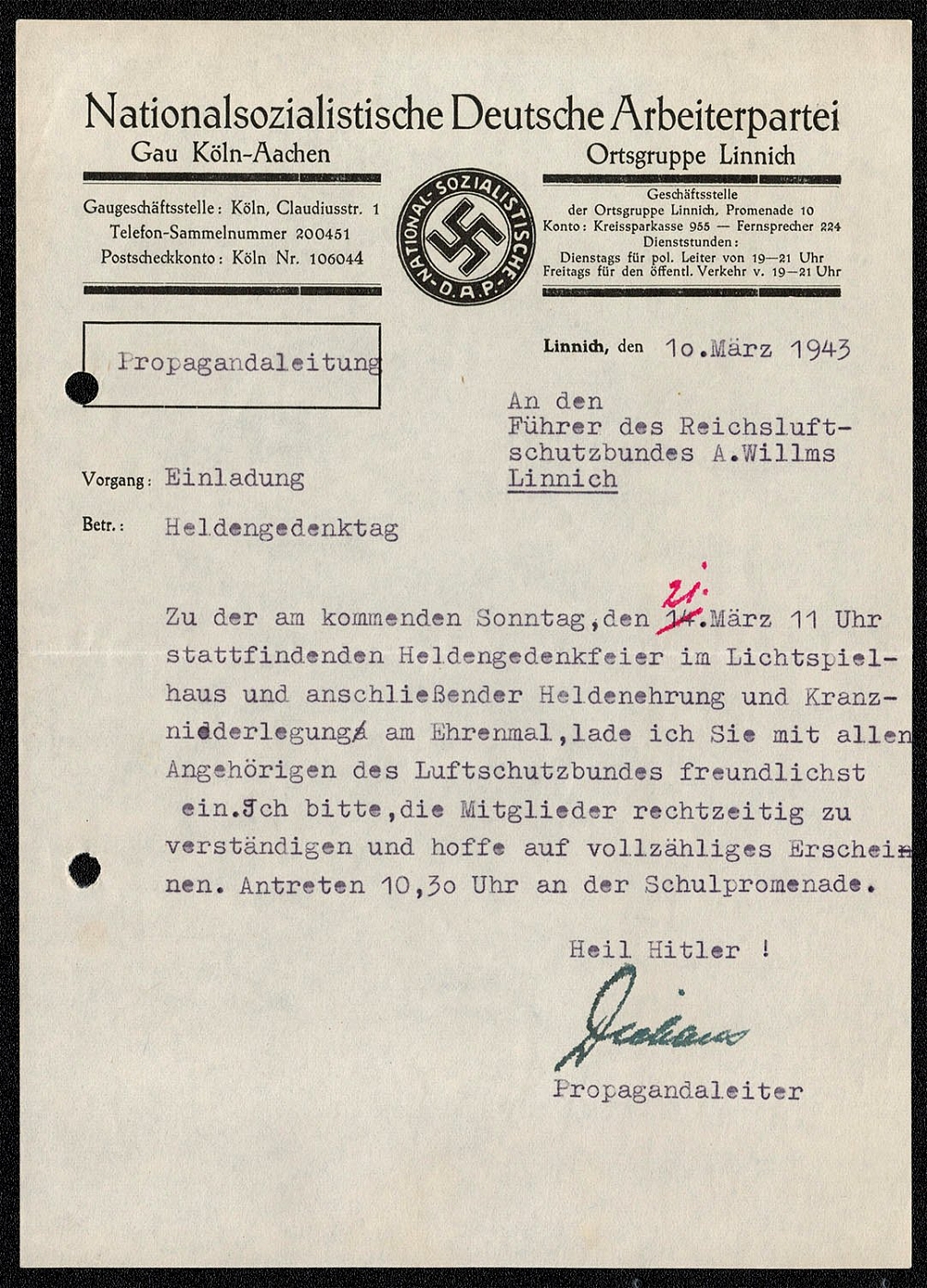
1943 National-socialist German Workers' Party Propaganda
1943 National-socialist German Workers' Party Propaganda
Sold for:
$20
840
-
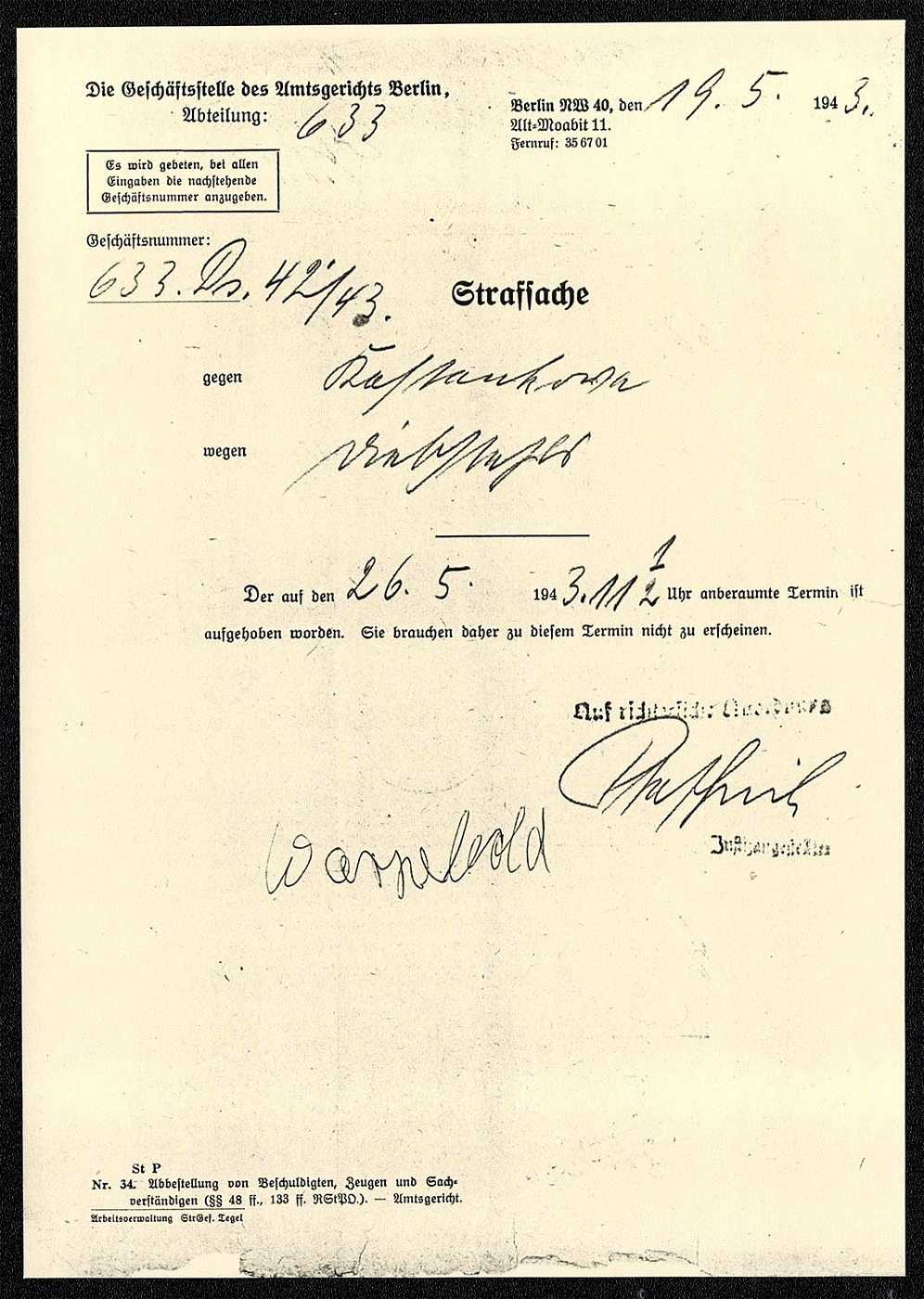
841
$10
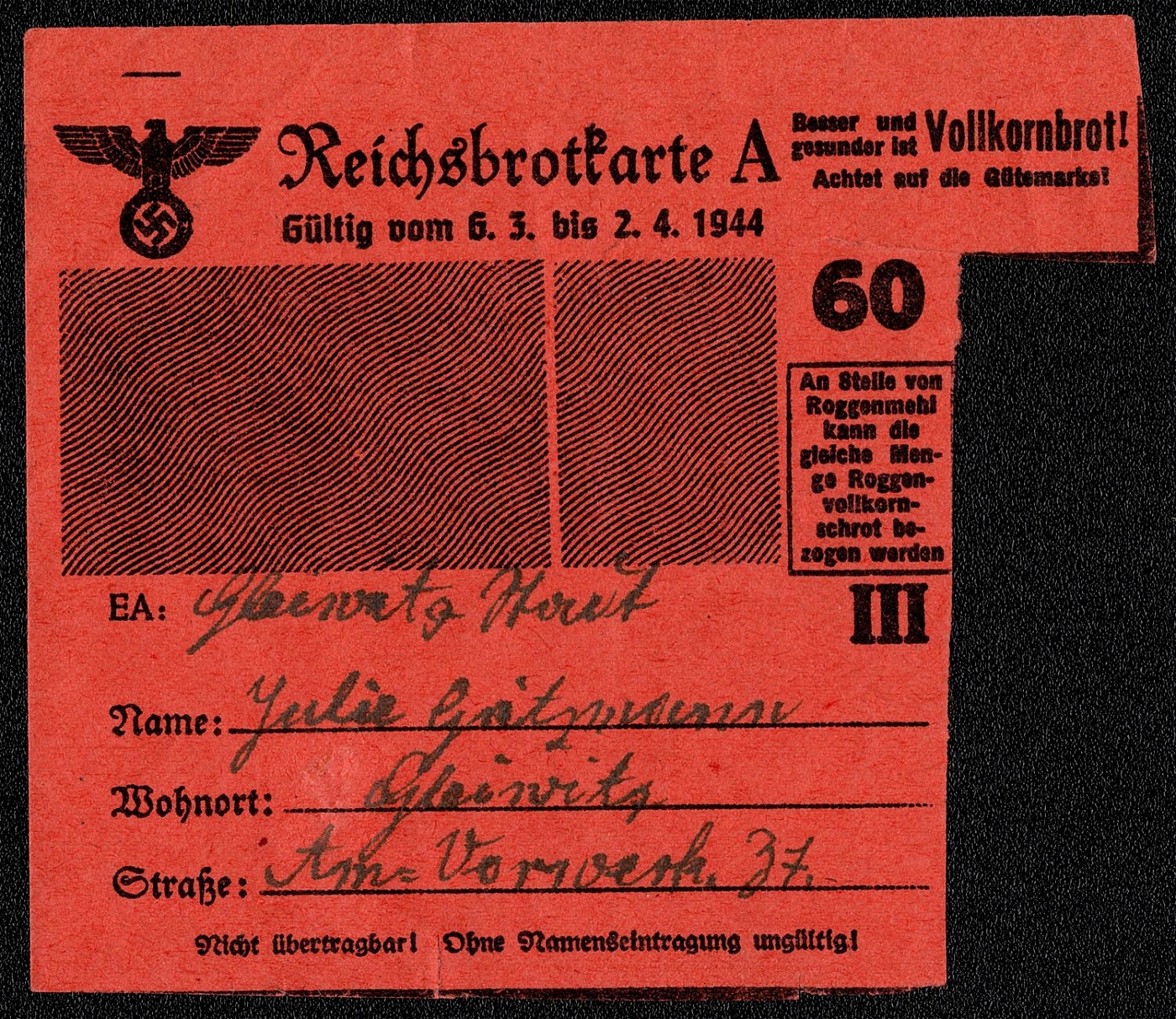
1944 Reichs Bread Card
(Rationing Card) Reichs Bread Card A Valid 6 March through 2 April 1944 Whole wheat bread is better and more healthy!
Sold for:
$10
842
$10
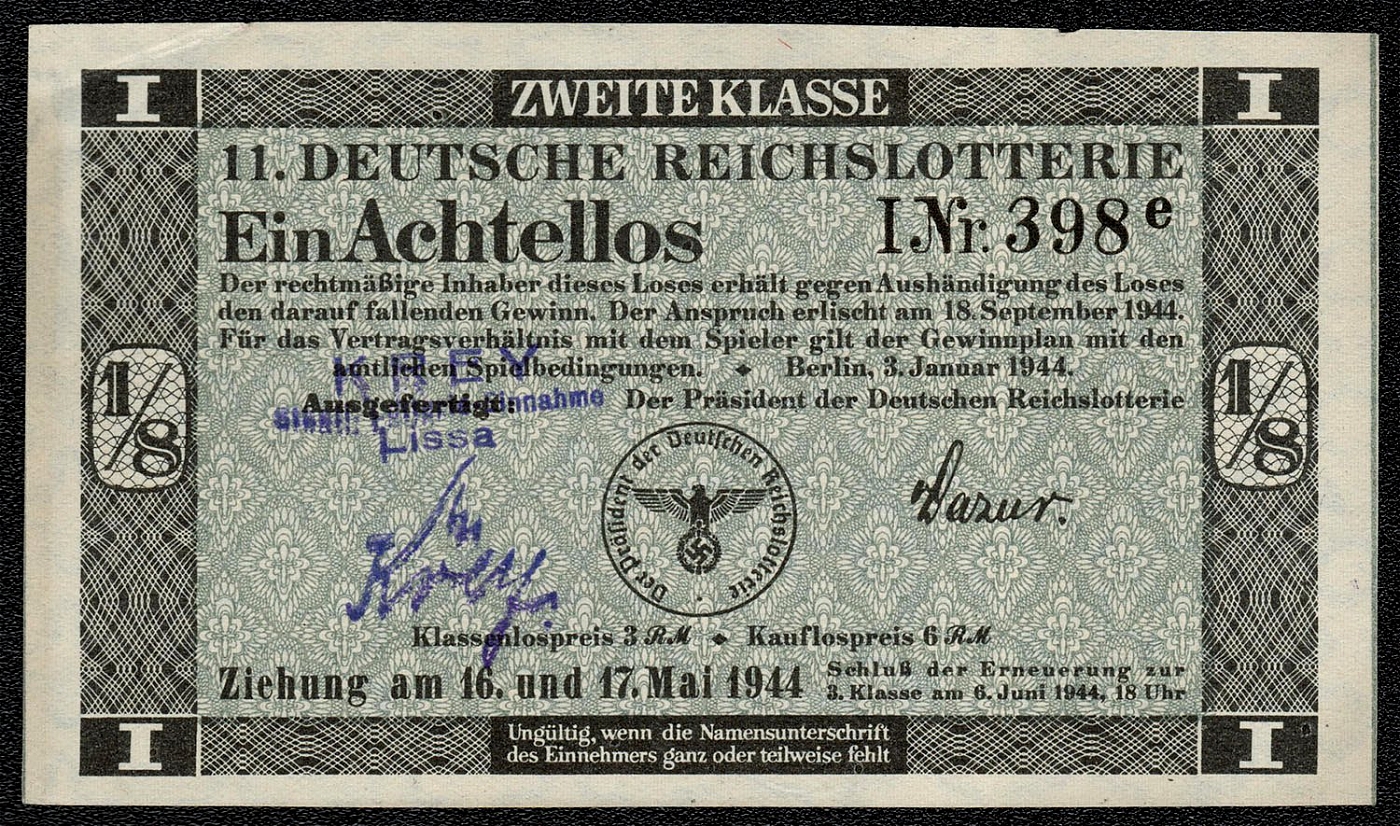
1944 The German State Lottery
"A Class Two lottery ticket for one eighth of the Grand Prize of the 1 llh State Lottery held on the 16‘” and 17""’ of May 1944."
Sold for:
$10
843
$10
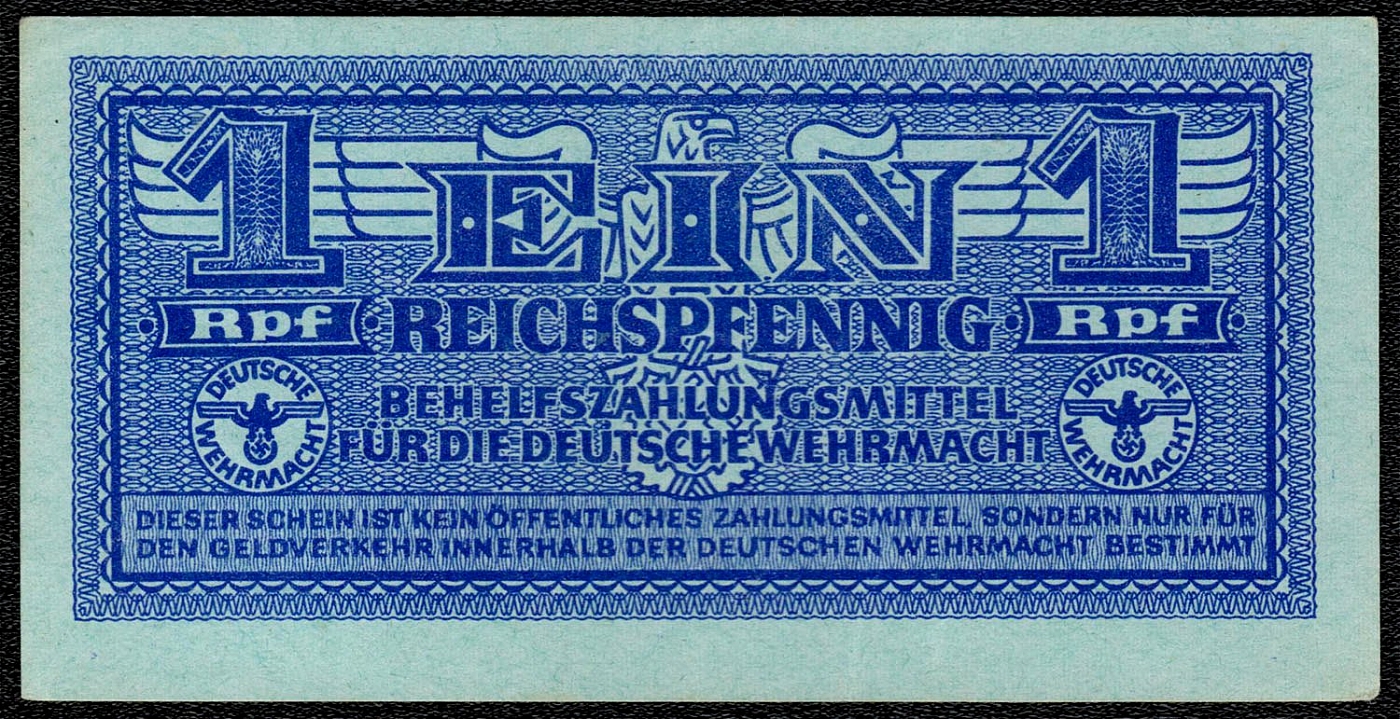
1944 Wehrmacht Payment Certificate
This note, circa 1944, could only be used by military personnel, and only in military establishments. It was worth 10 times the face value of one pfennig if used properly or sent home to Germany.
Sold for:
$10
844
-
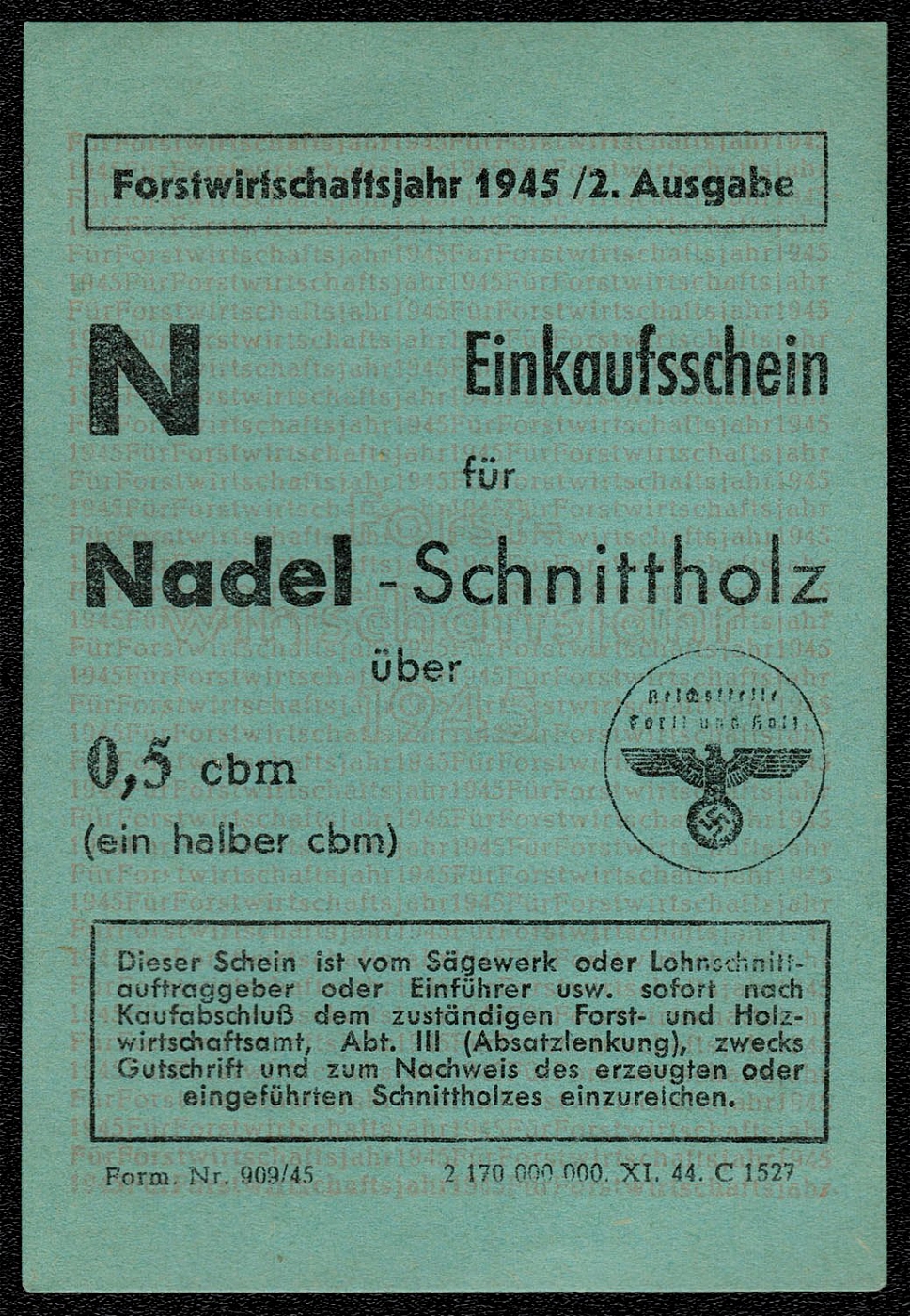
1944 Ticket for cutting more than a half-cubic meter of coniferous timber
Forestry Year 1945 2nd Issue Ticket for cutting more than a half-cubic meter of coniferous timber. (Form Nr. 909/45, printed November 1944)
Unsold
845
$60
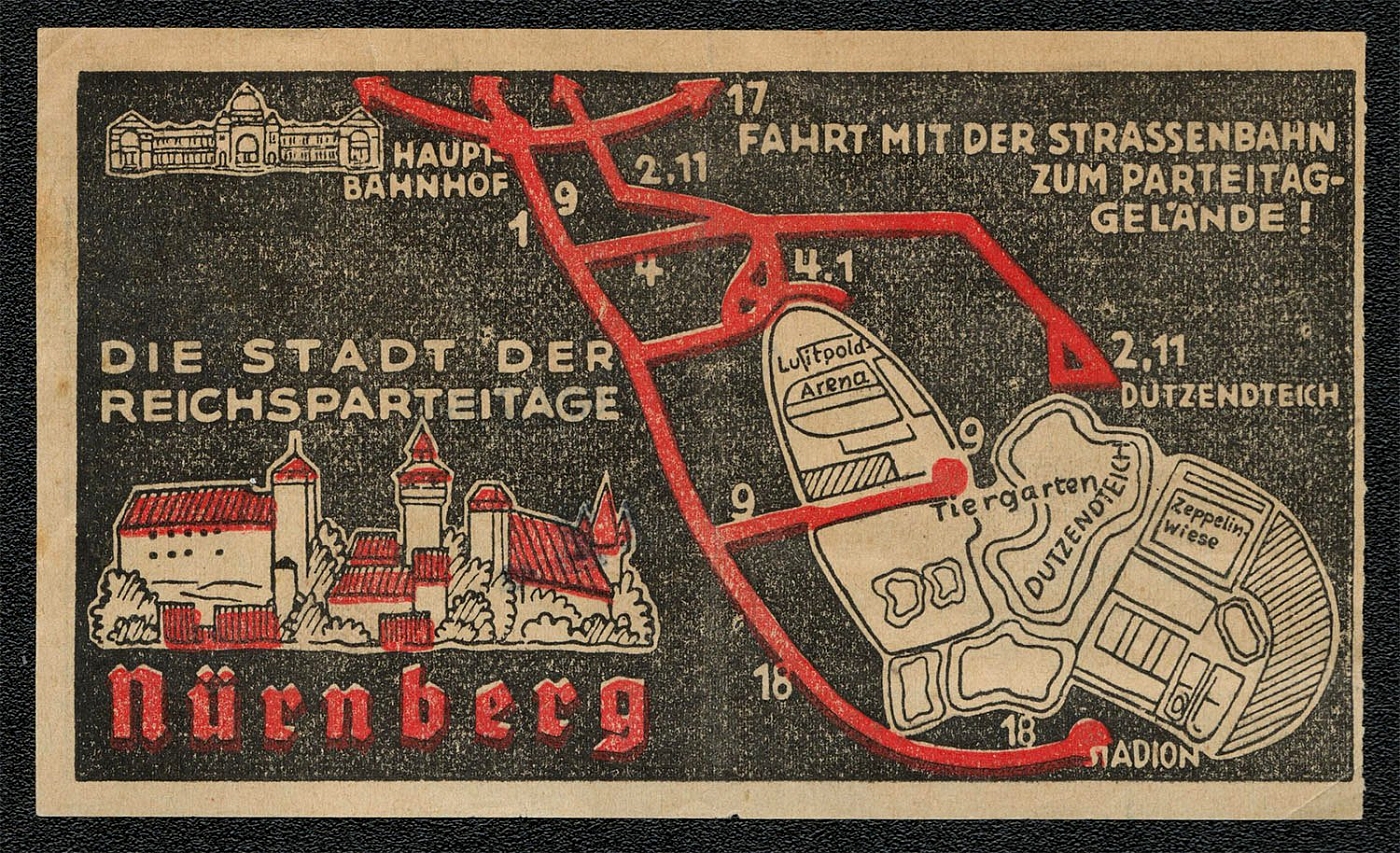
1936 Illustrated streetcar ticket from the Nuremberg Hauptbahnhof (main railroad station) to the Party Rally Grounds
Streetcar Ticket RIDE THE STREETCAR TO THE PARTY GROUNDS! Illustrated streetcar ticket from the Hauptbahnhof (main railroad station) to the Party Rally Grounds. Illustrated streetcar ticket from the Nurnberg Hauptbahnhof (main railroad station) to the Party Rally Grounds. The sketch appears to be a stylized map of Nurnberg’s major streets. Riickseite beachten! translates: Pay attention to the reverse! The 20 Rpf. ticket appears to be dated 12 September 1936. The 12,h, a Saturday, included a review of the Hitler Youth at the Stadium with speeches by Hitler and Schirach, the opening of the carnival at the Rally Grounds and a fireworks show at 8:00 P.M.
Sold for:
$60
846
$30
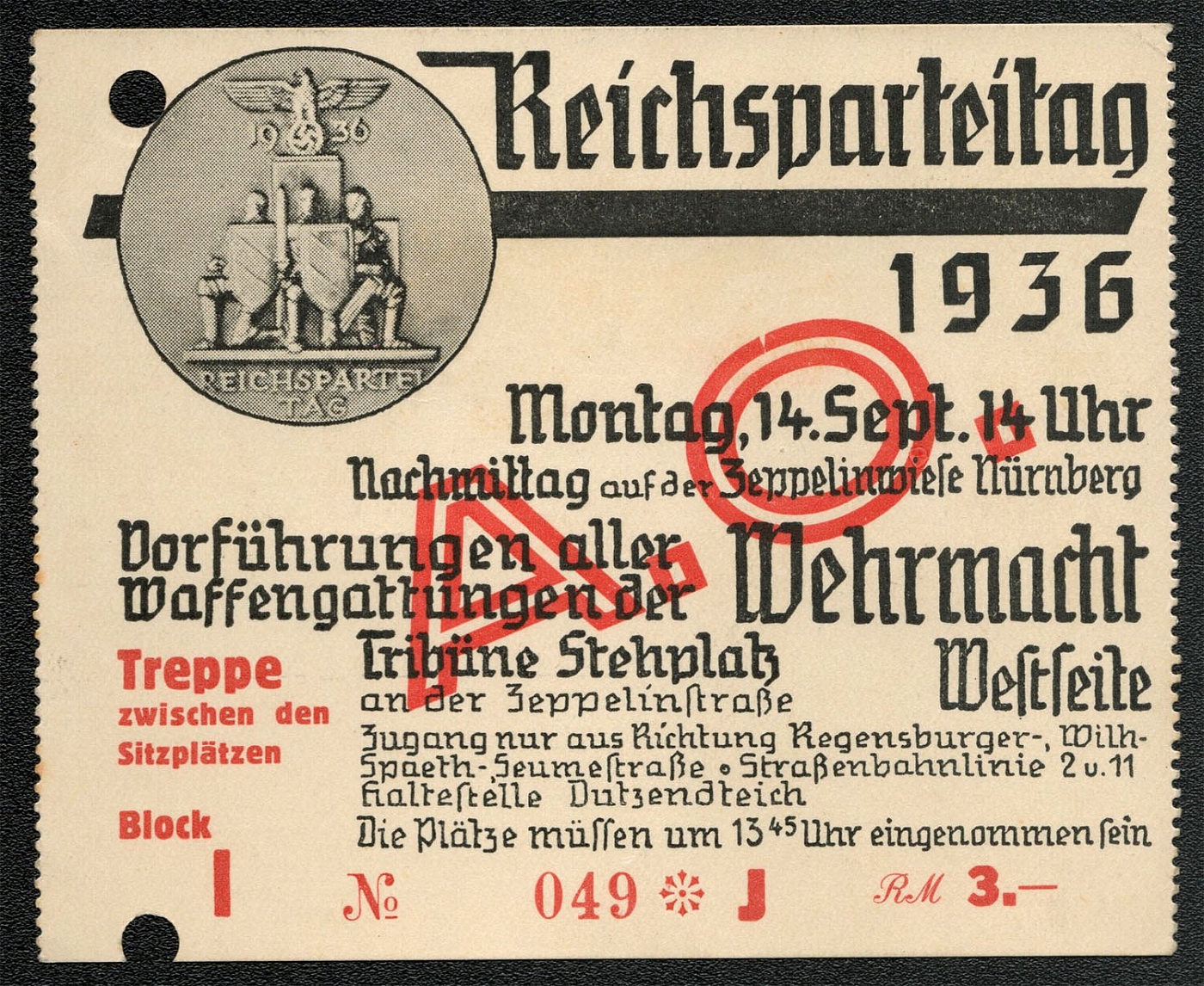
1936 Reich Party Day Ticket
Reich Party Day Ticket Monday, 14.Sept. 2 PM Afternoon on the Nurnberg Zeppelinweise A Demonstration of the Arms of the Wehrmacht Standing Room on the West Side of Zeppelin Street Price: 3 Reich Marks
Sold for:
$30
847
$30
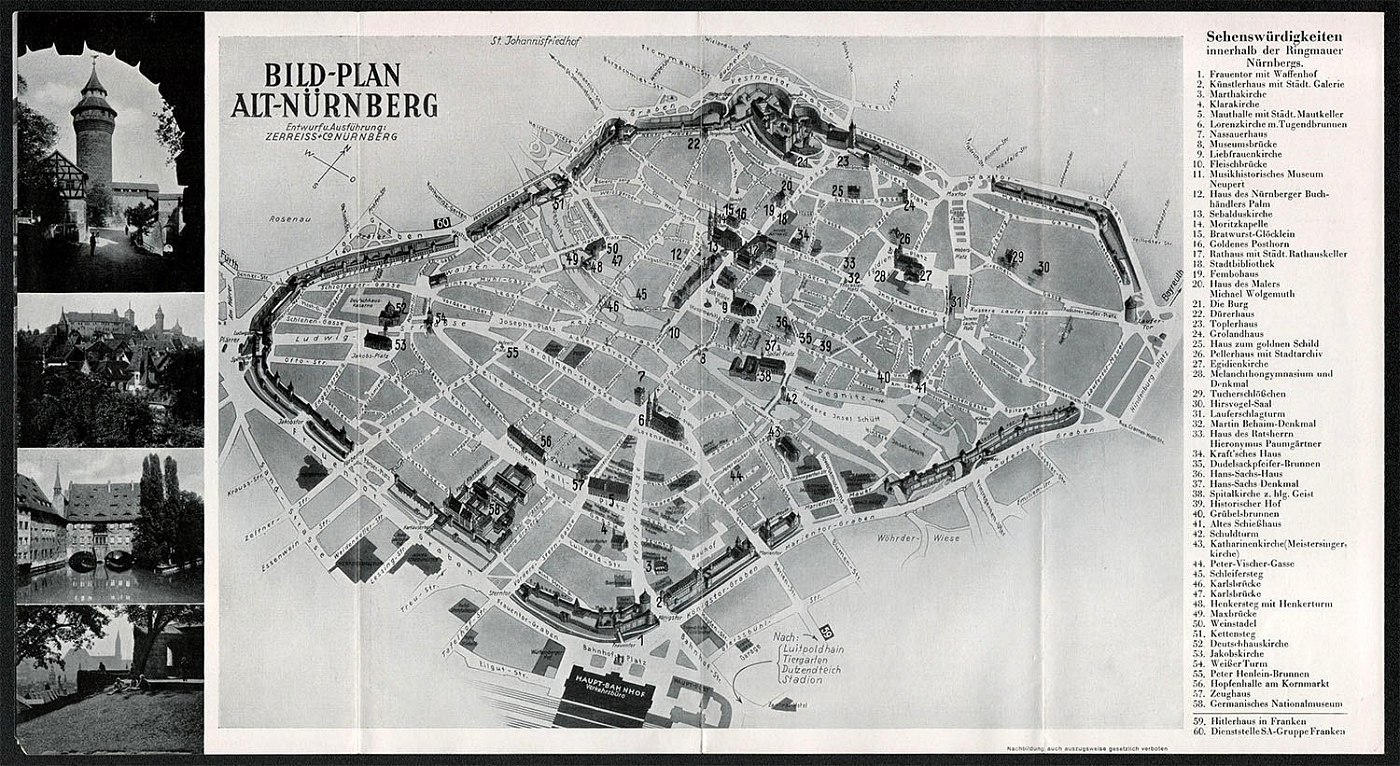
848
$150

1934 Storm Trooper identity card for Corporal Josef Eicker, Germany Third Reich
Rottenfiihrer Eicker became a member of the S.A. on 1 January 1934. He was a small slender man with blond hair and blue eyes weighing about 160 pounds. The card was issued 1 April 1937 in Dulken. Sturmabteilung (Storm Trooper) identity card for Corporal Josef Eicker born 6 January 1915 in Dulken. Eicker was in the Niederrhein Group, 75lh Brigade, 75'h Standard.
Sold for:
$150
849
-
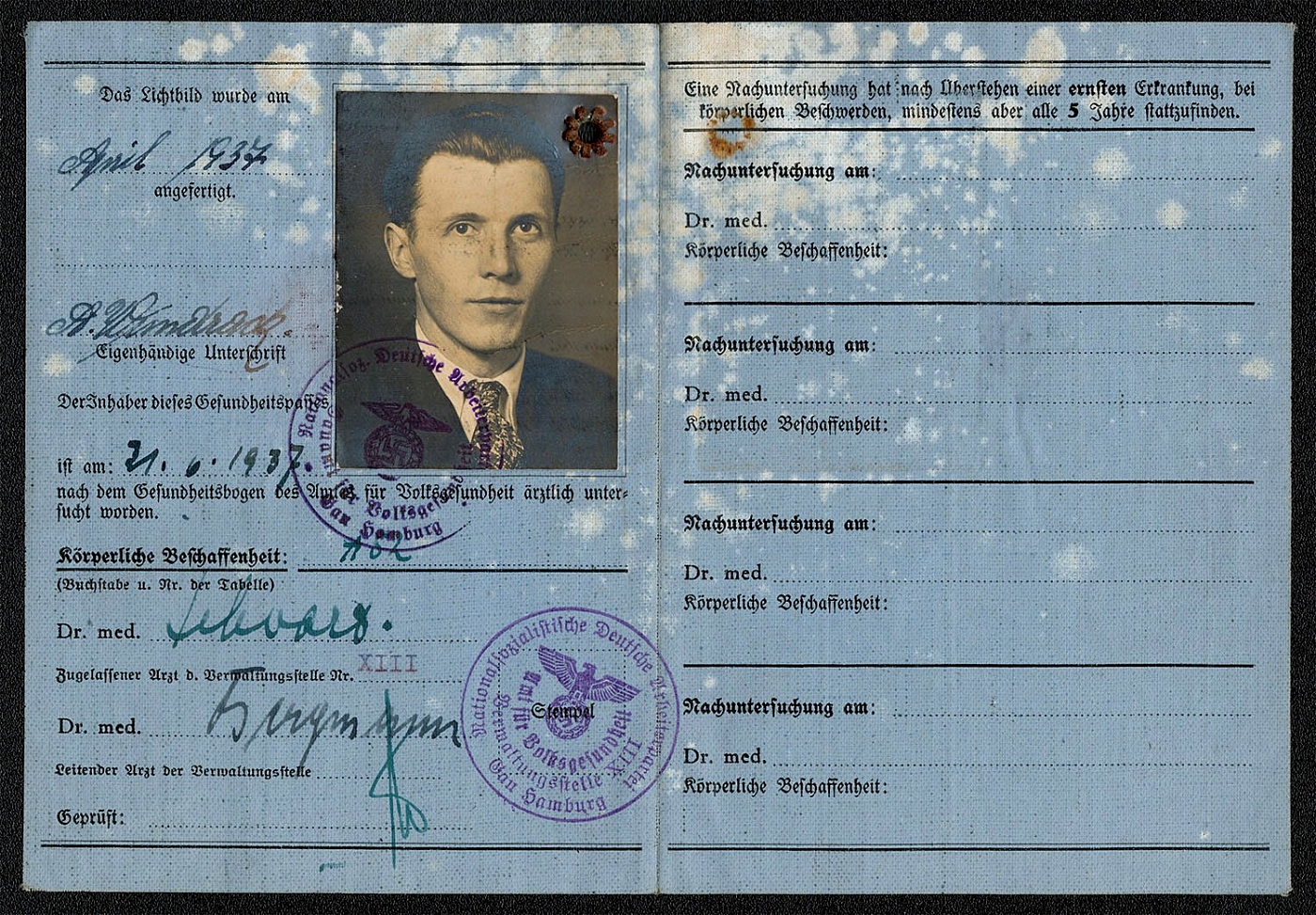
1937 Healthpass Office for the Peoples Health of the NSDAP, Germany Third Reich
Healthpass Office for the Peoples Health of the NSDAP. Gau Hamburg Arnold Wundrack Born 4 April 1907 in Hamburg Occupation: Electrician Photo taken in April 1937 Healthpass issued 21 June 1937
Unsold
850
-
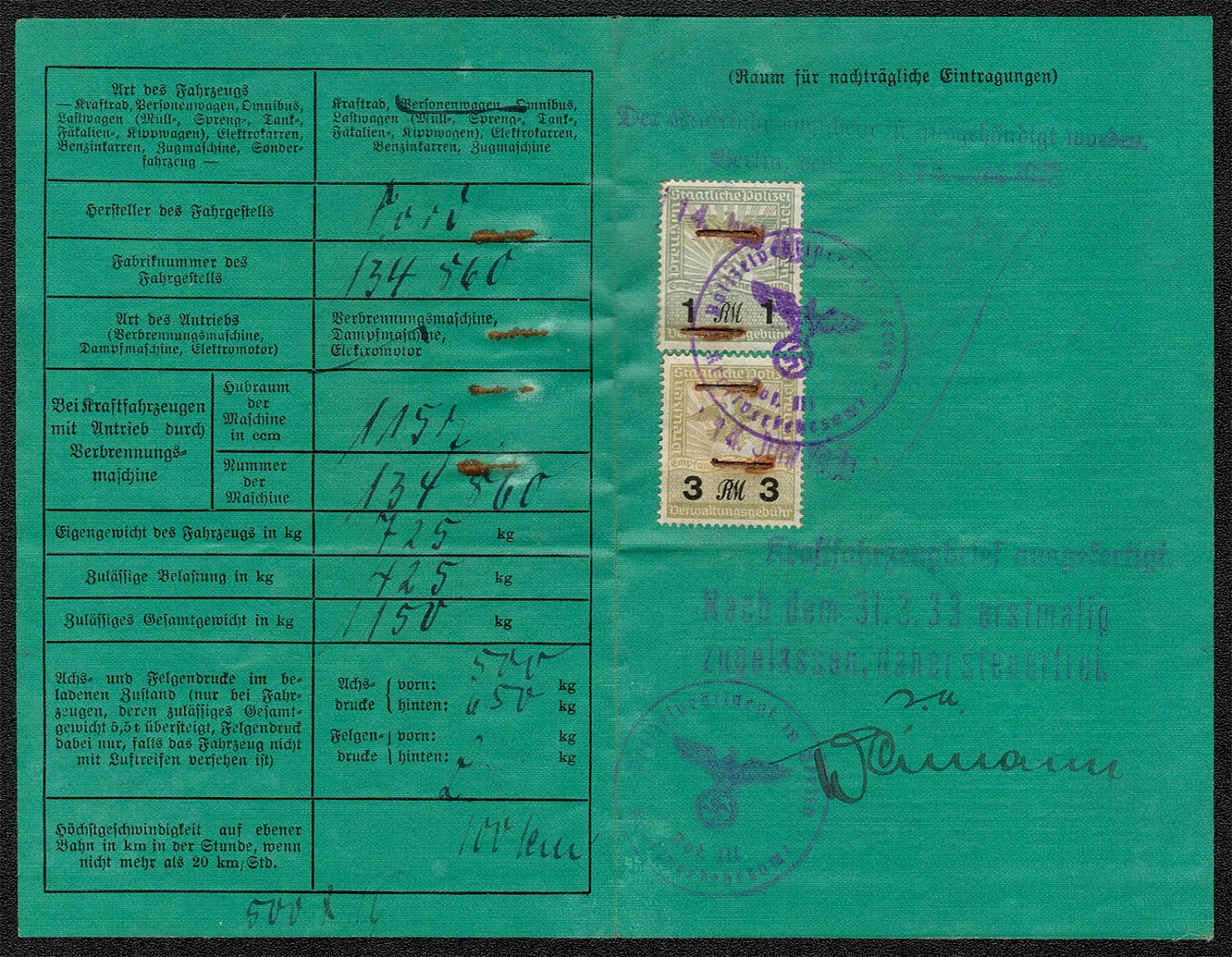
1938 Vehicle Registration Document, Germany Third Reich
Registration document dated 14 June 1938 for a Ford automobile weighing 1150 kg (2535 pounds) with revenue stamps totaling 4 Reichsmarks. The car was owned by Gerhart Prause of Berlin.
Unsold
851
-
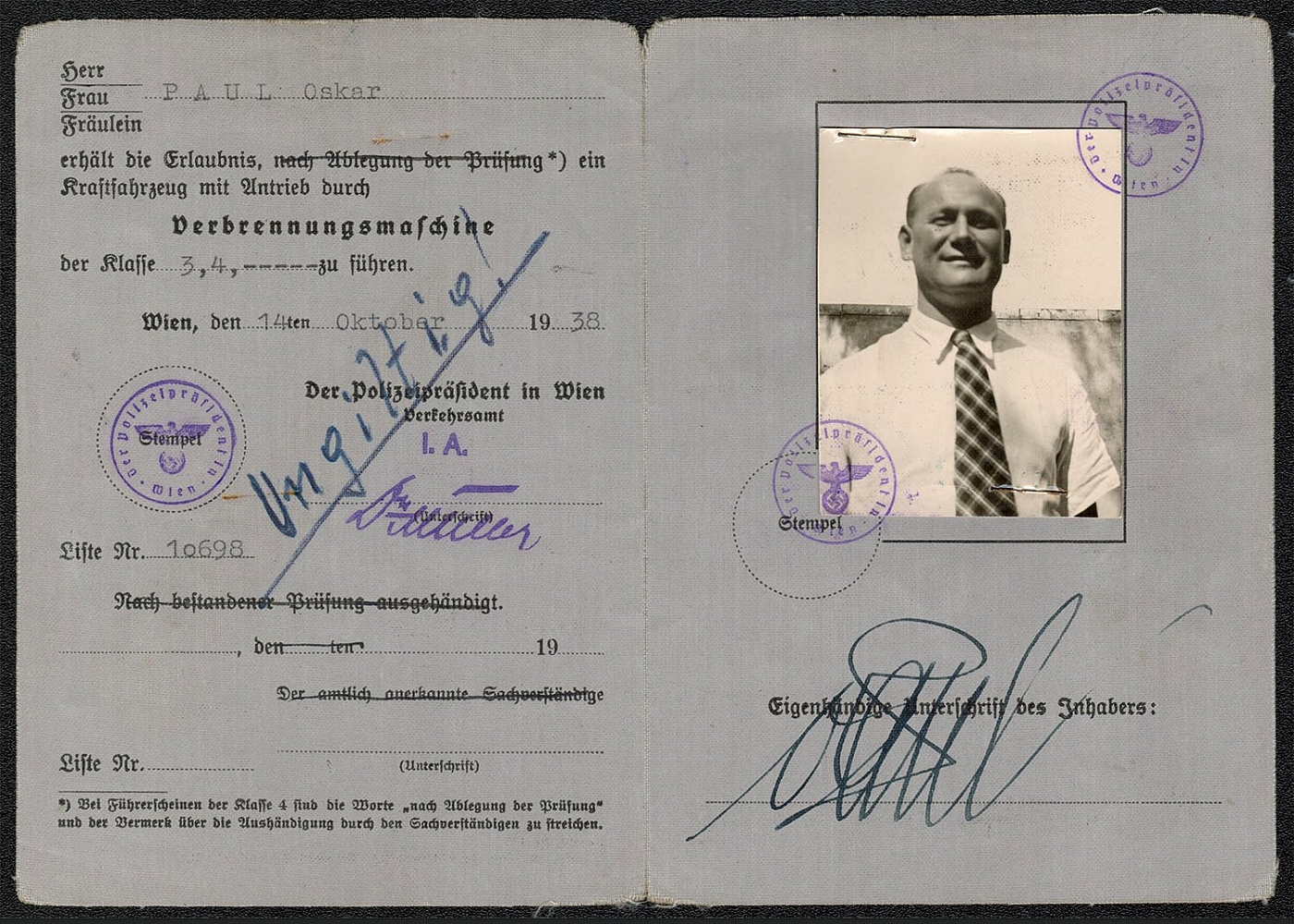
1938 Driver’s License that allowed him to drive an automobile with a Class 3 and 4 internal combustion engine, Germany Third Reich
Thirty-seven year old Oskar Paul was granted a Driver’s License that allowed him to drive an automobile with a Class 3 and 4 internal combustion engine on 14 October 1938 by the Police Chief of Wien.
Unsold
852
$110

853
$20
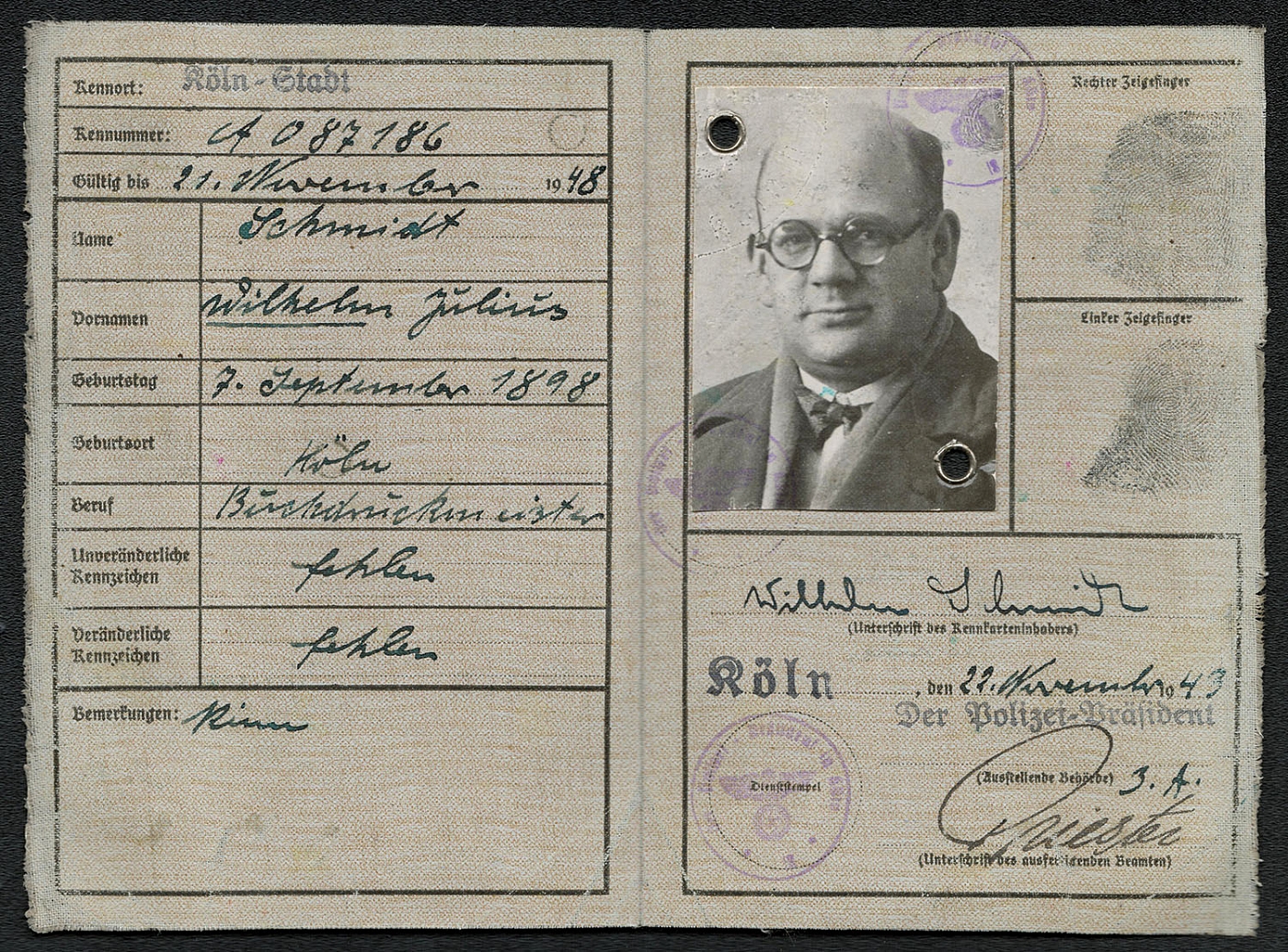
854
-
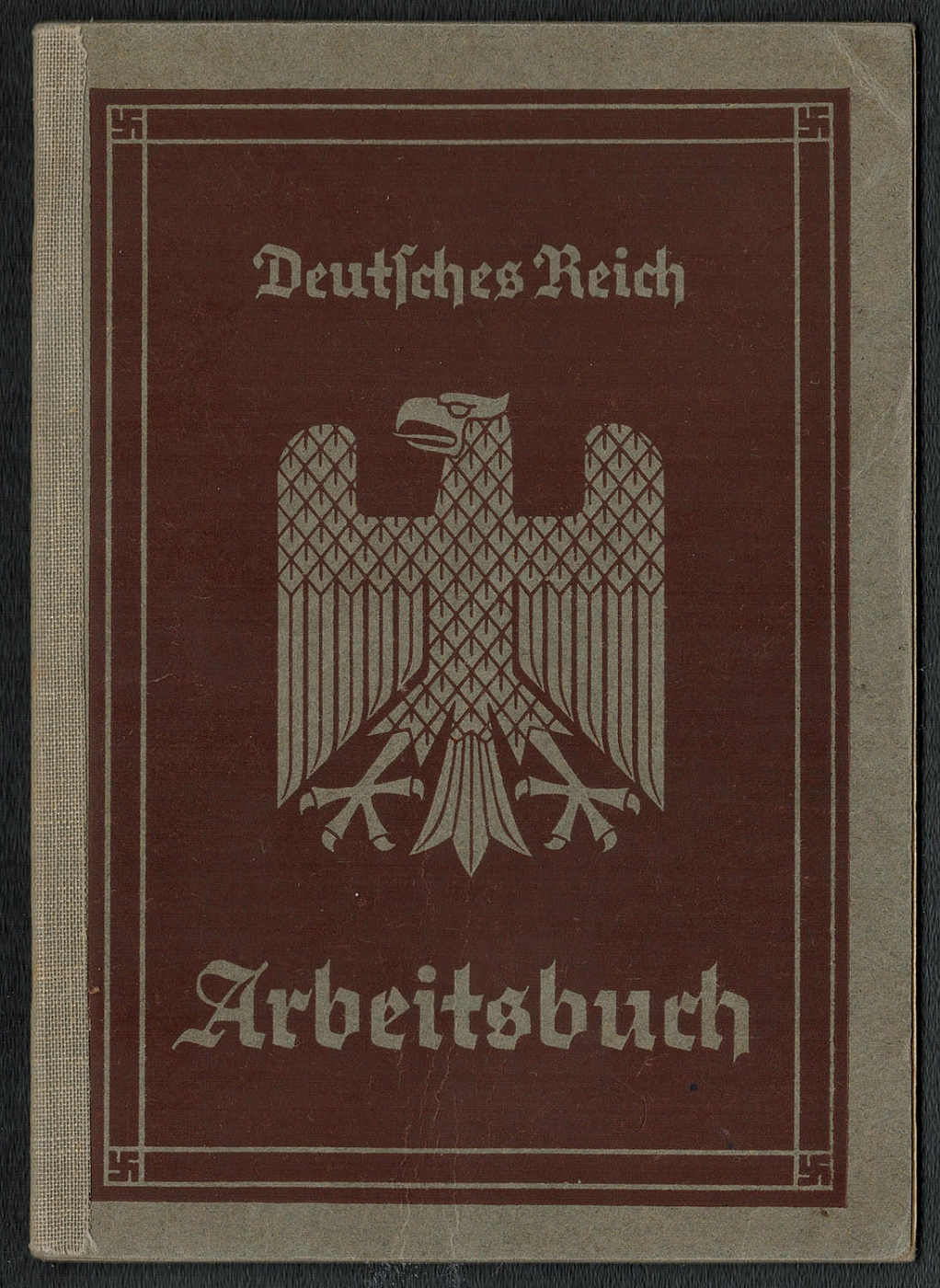
855
-
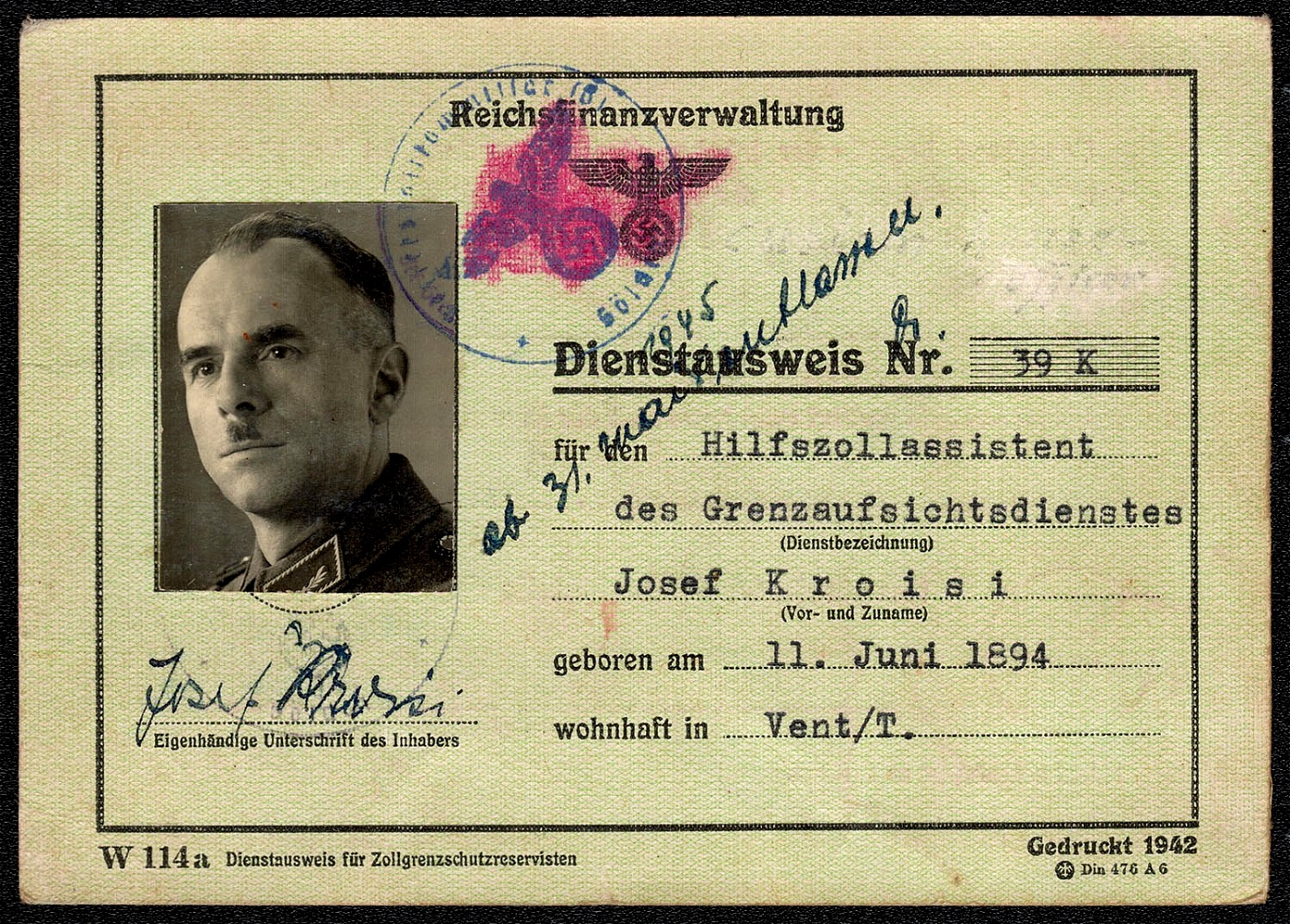
1944 Reichs Finance Administration Service Card No. 39K for the Customs Assistant, Germany Third Reich
Reichs Finance Administration Dienstausweis Nr. 39K fur den Hilfszollassistent Service Card No. 39K for the Customs Assistant Grenzaufsichtsdienstes (Border Supervisor Service) Josef Kroisi Born 11 June 1894. Card issued 23 January 1945.
Unsold
856
-
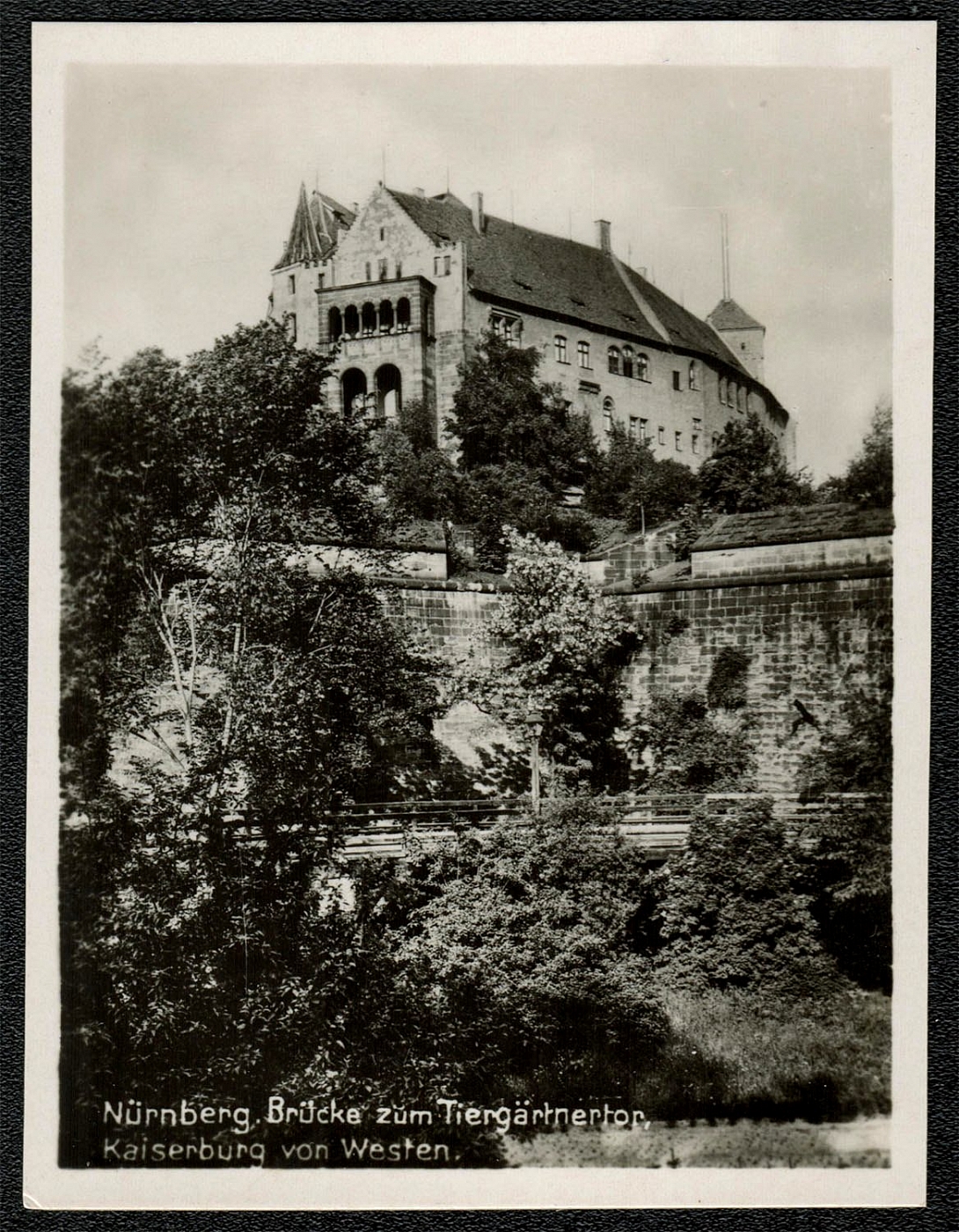
Nuremberg. Photo The bridge beside the zoological garden gate of the Imperial Castle as seen from the west.
The bridge beside the zoological garden gate of the Imperial Castle as seen from the west.
Unsold
857
-
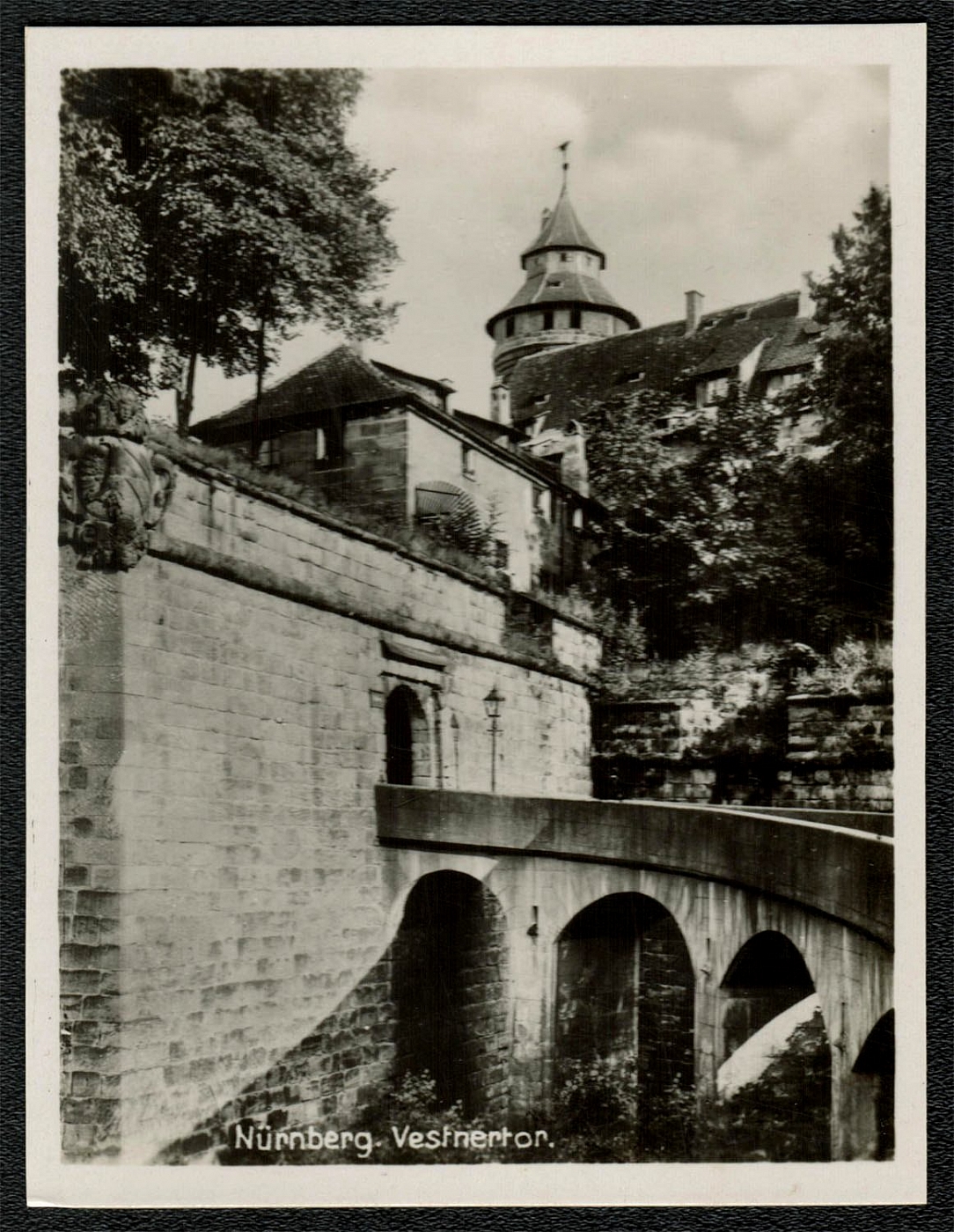
858
-
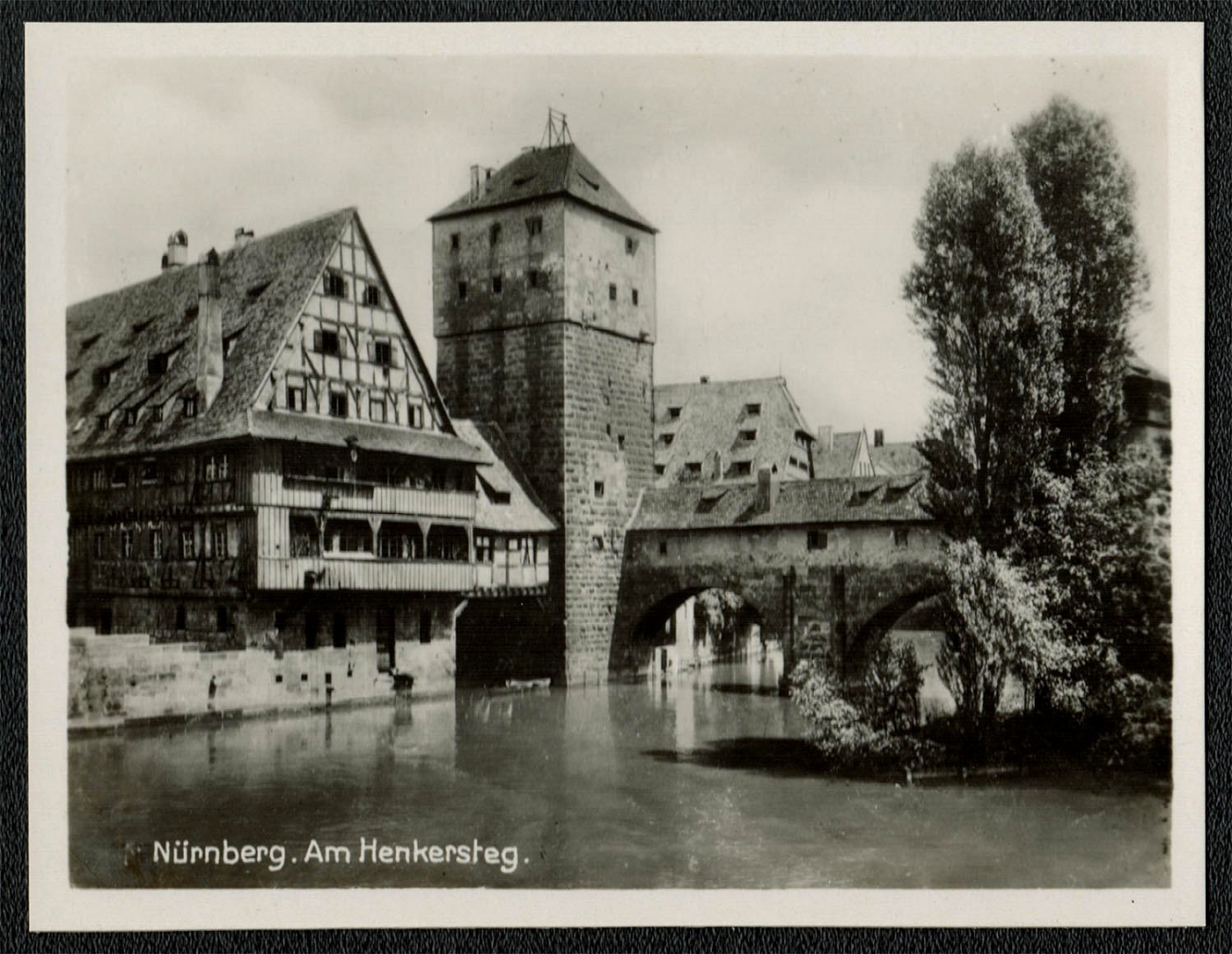
859
-
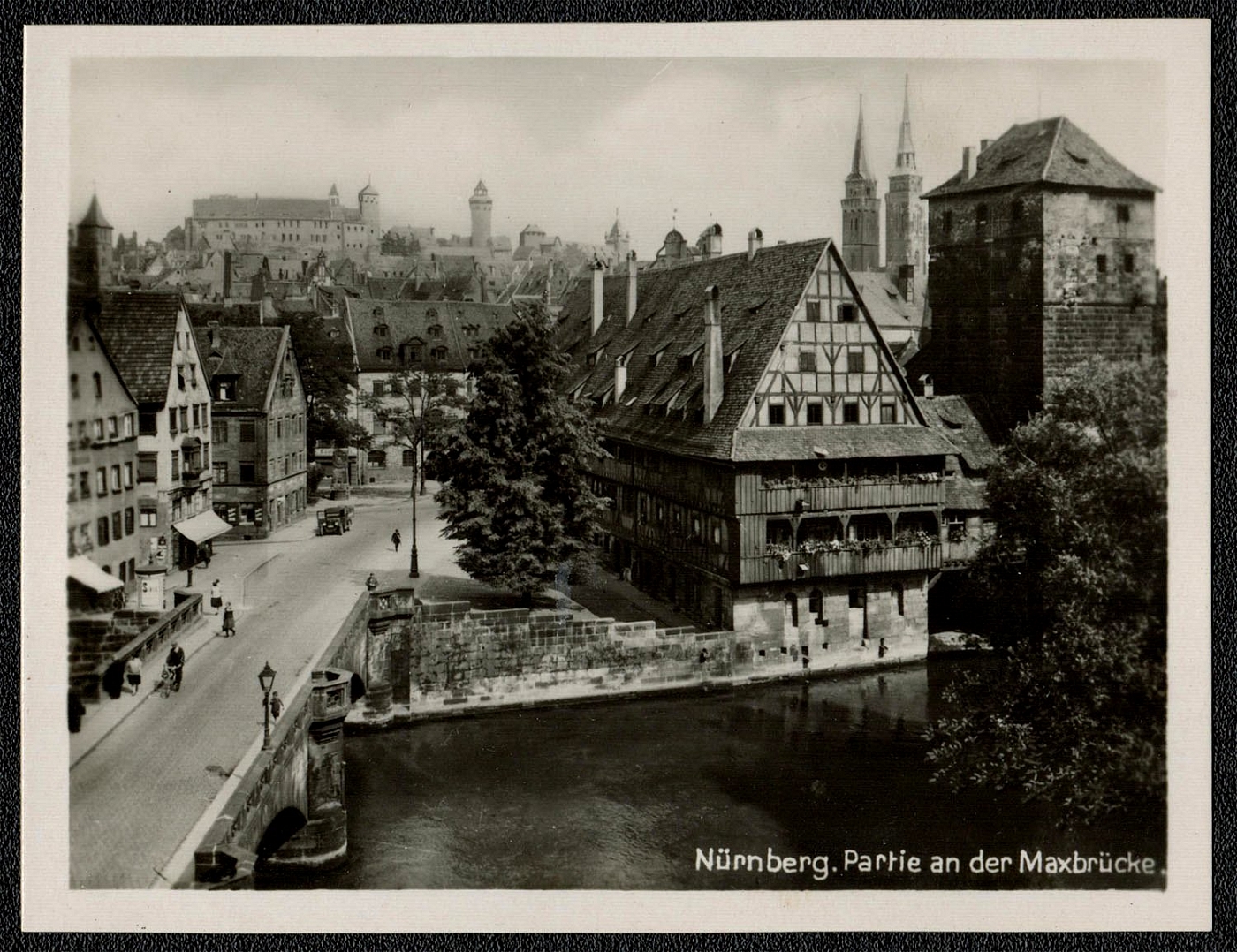
Nuremberg. Photo Excursion on the Max Bridge.
Like Augsburg, Nurnberg attained great wealth as an intermediary between Italy and the East on the one hand, and northern Europe on the other. Its manufactures were well known. The town gradually extended its sway over a territory nearly 500 square miles in extent, and was able to furnish the emperor Maximilian with a contingent of 6,000 troops. But perhaps the great glory of Nurnberg lies in its claim to be the principal fount of German art. Adam Kraft. Veit Stoss and Peter Vischer are famed as sculptors. In painting Nurnberg claims Albrecht Diirer and Michael Wohlgemuth. A large proportion of the old German furniture, silver-plate, stoves and the like was made in Nurnberg workshops.
Unsold
860
-
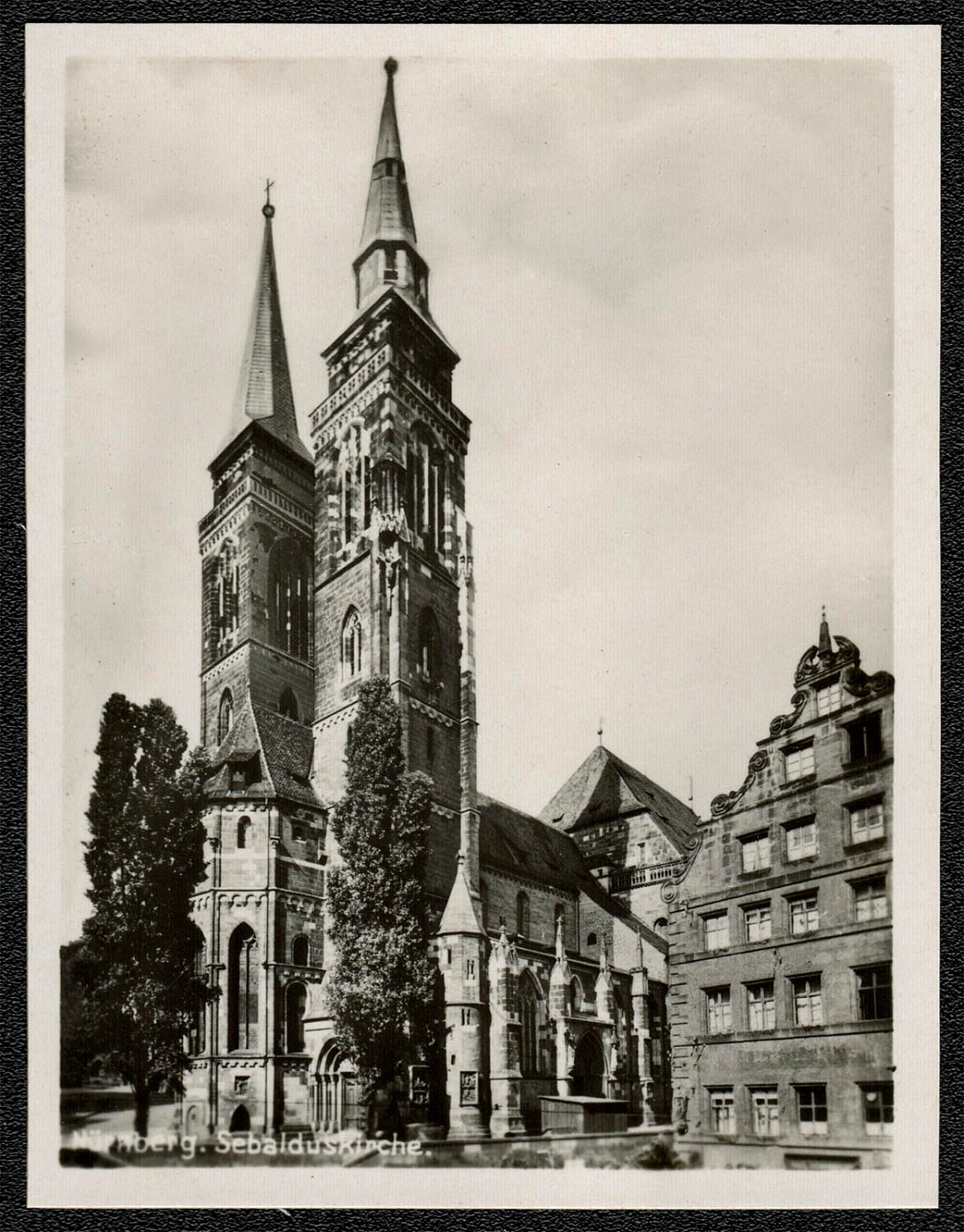
Nuremberg. Photo St. Sebaldus Church.
Like Augsburg, Nurnberg attained great wealth as an intermediary between Italy and the East on the one hand, and northern Europe on the other. Its manufactures were well known. The town gradually extended its sway over a territory nearly 500 square miles in extent, and was able to furnish the emperor Maximilian with a contingent of 6,000 troops. But perhaps the great glory of Nurnberg lies in its claim to be the principal fount of German art. Adam Kraft. Veit Stoss and Peter Vischer are famed as sculptors. In painting Nurnberg claims Albrecht Diirer and Michael Wohlgemuth. A large proportion of the old German furniture, silver-plate, stoves and the like was made in Nurnberg workshops.
Unsold
861
-
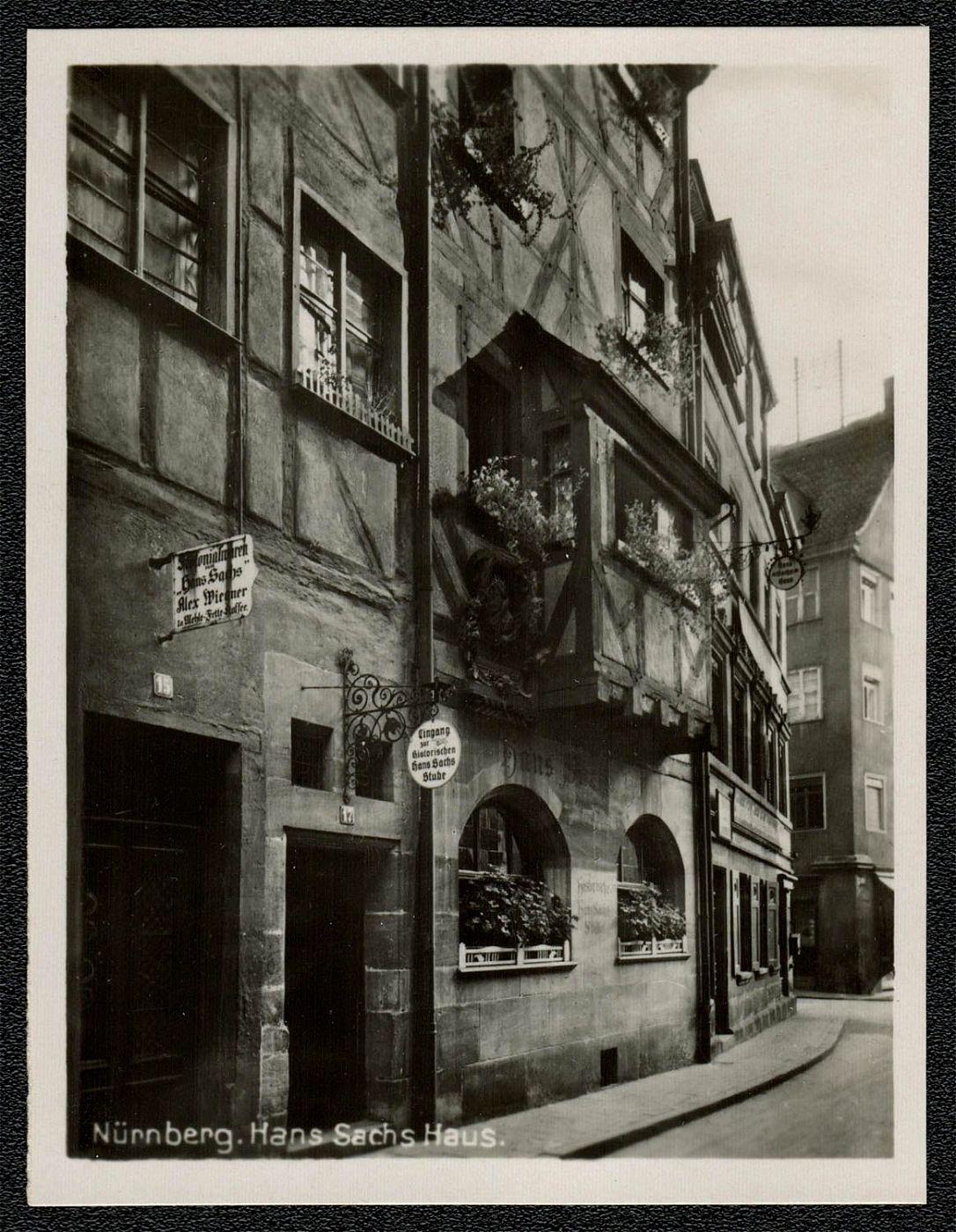
Nuremberg. Photo Hans Sachs House
Like Augsburg, Nurnberg attained great wealth as an intermediary between Italy and the East on the one hand, and northern Europe on the other. Its manufactures were well known. The town gradually extended its sway over a territory nearly 500 square miles in extent, and was able to furnish the emperor Maximilian with a contingent of 6,000 troops. But perhaps the great glory of Nurnberg lies in its claim to be the principal fount of German art. Adam Kraft. Veit Stoss and Peter Vischer are famed as sculptors. In painting Nurnberg claims Albrecht Diirer and Michael Wohlgemuth. A large proportion of the old German furniture, silver-plate, stoves and the like was made in Nurnberg workshops.
Unsold
862
-
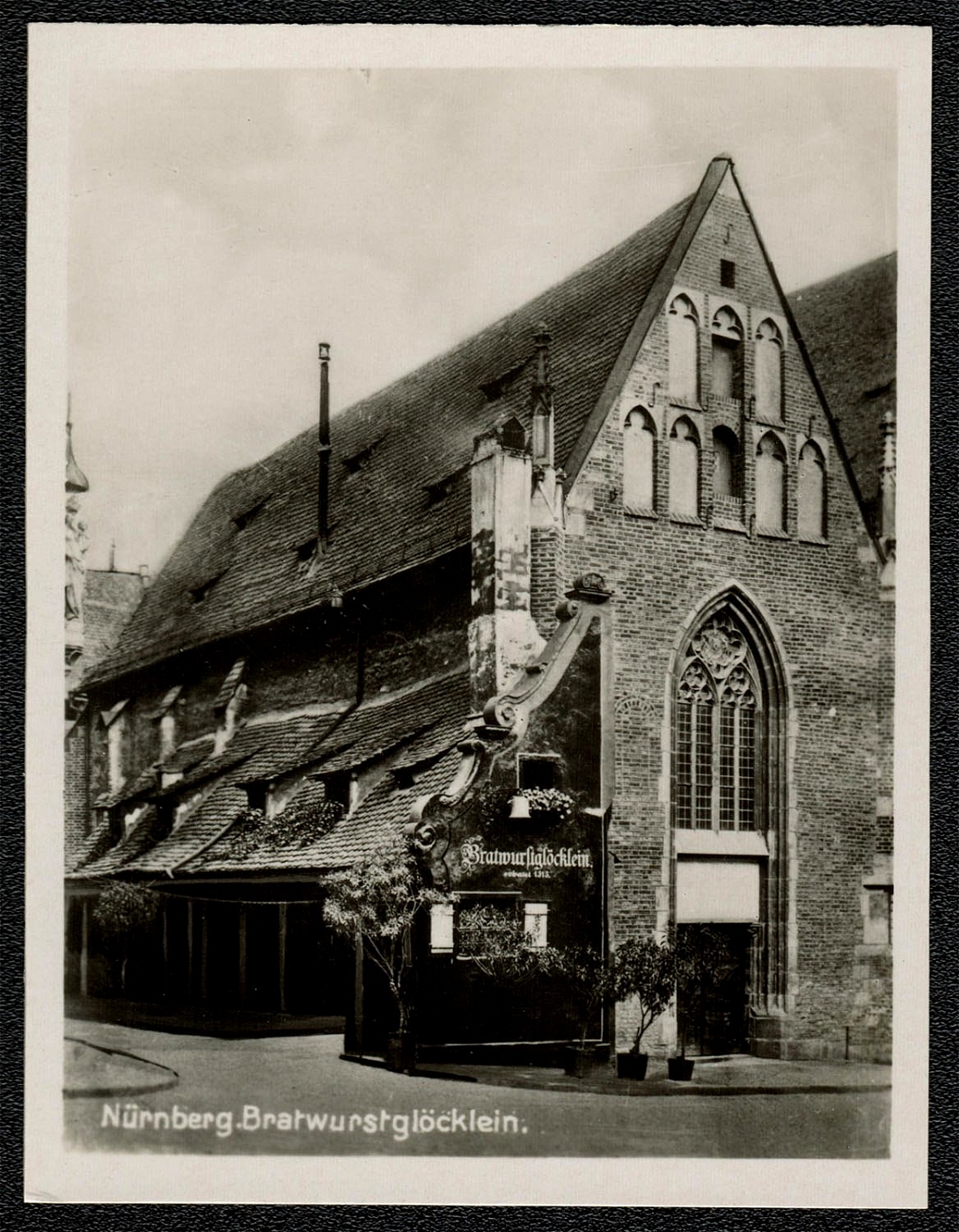
Nuremberg. Photo The Bratwurstglocklein, a “beer restaurant” famous for its sausages built in 1313
"Nurnberg was continually ruled by patrician families, and German monarchs frequently resided and held diets or assemblies here, and in 1219 Frederick II conferred upon it the rights of a free imperial town. Nurnberg is said to have been destroyed by Emperor Henry V in 1105, but in 1127 Emperor Lothair took it from the Duke of Swabia and assigned it to the Duke of Bavaria. An imperial office, known as the Burgrave or Governor of Niirnberg, became prominent in the 12lh century and came into the hands of the Counts of Hohenzollern at the beginning of the 13""‘ century."
Unsold
863
-
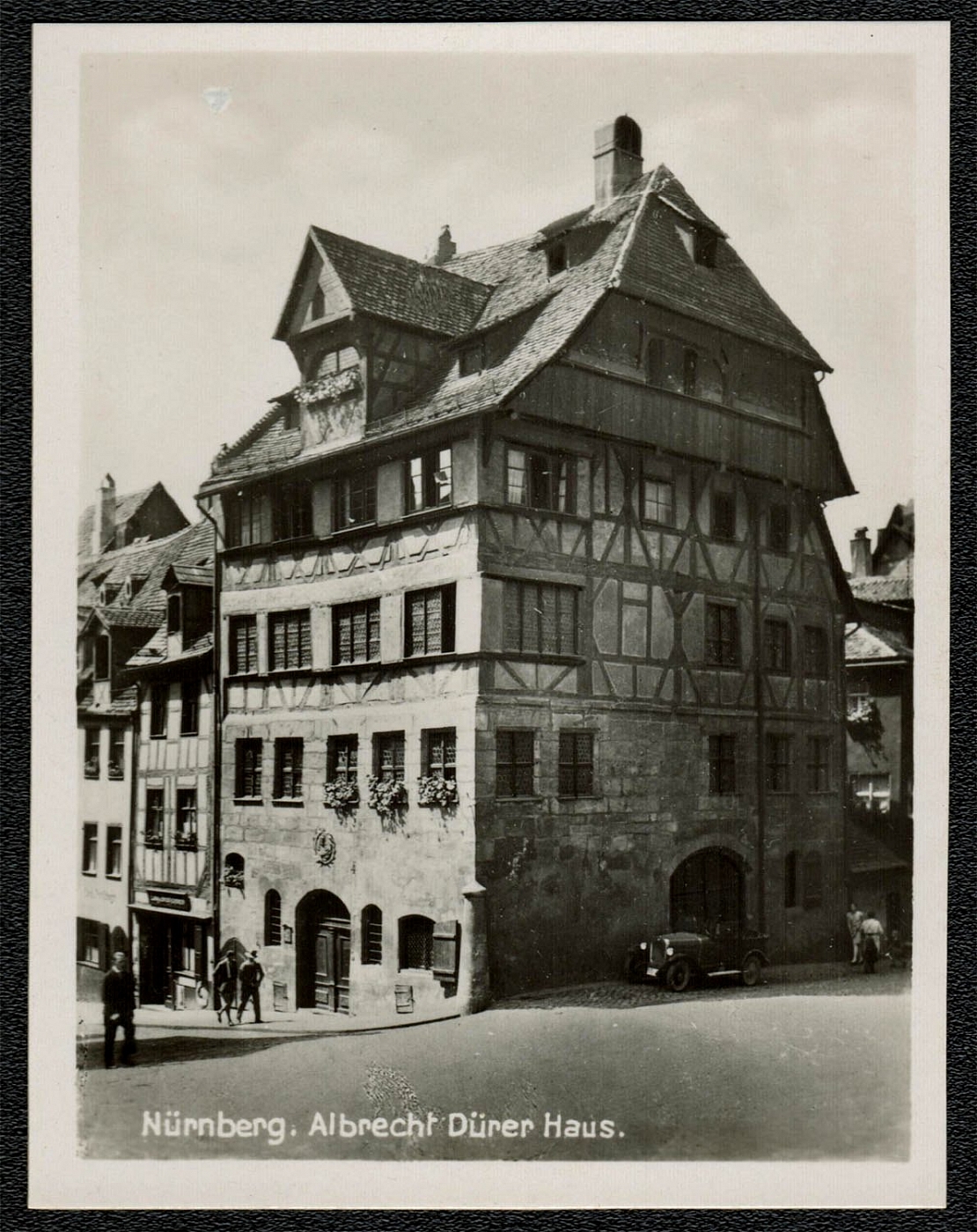
Nuremberg. Photo Albrecht Durer House.
"Nurnberg was continually ruled by patrician families, and German monarchs frequently resided and held diets or assemblies here, and in 1219 Frederick II conferred upon it the rights of a free imperial town. Nurnberg is said to have been destroyed by Emperor Henry V in 1105, but in 1127 Emperor Lothair took it from the Duke of Swabia and assigned it to the Duke of Bavaria. An imperial office, known as the Burgrave or Governor of Niirnberg, became prominent in the 12lh century and came into the hands of the Counts of Hohenzollern at the beginning of the 13""‘ century."
Unsold
864
-
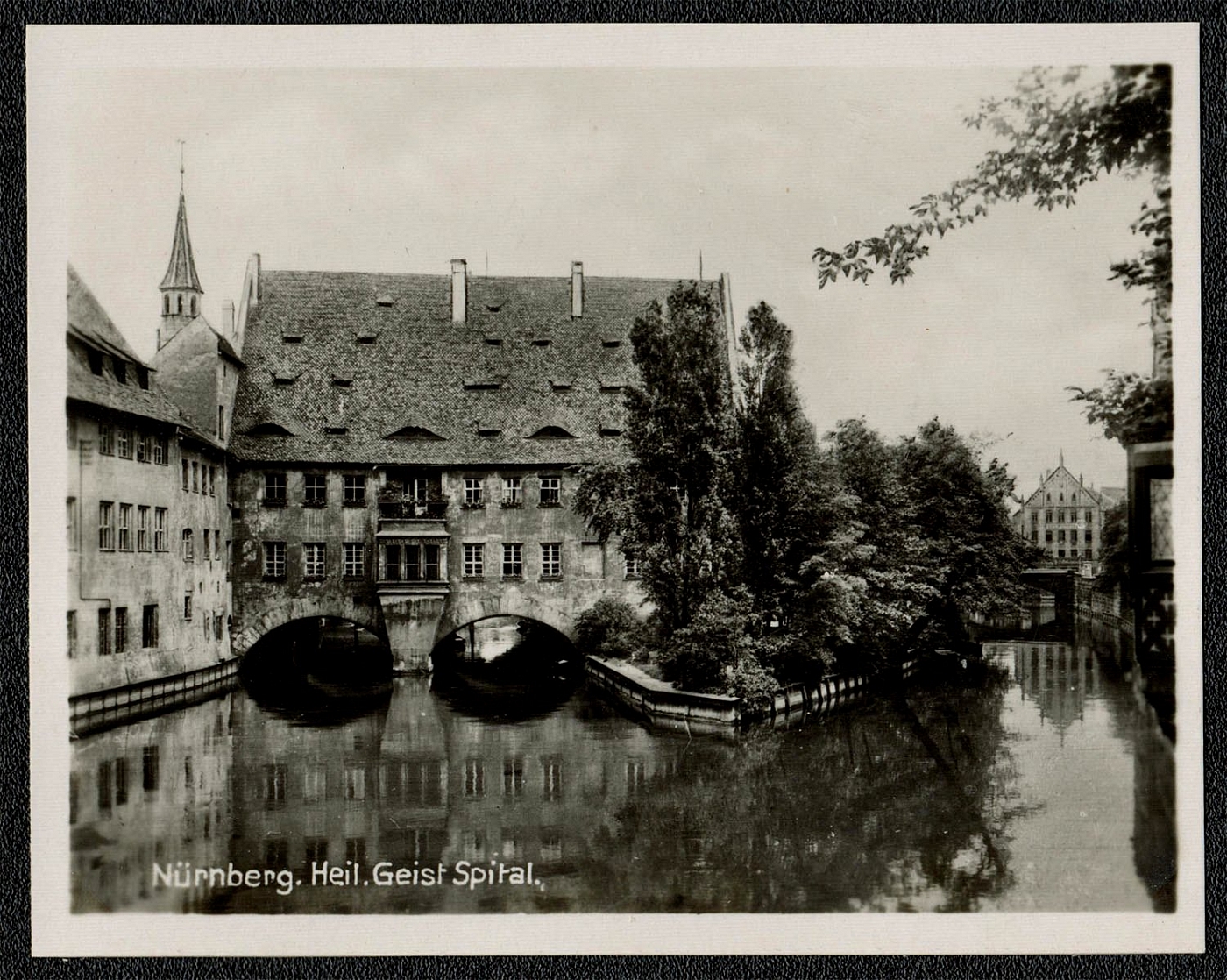
Nuremberg. Photo Holy Ghost Hospital dating from 1381
"Nurnberg was continually ruled by patrician families, and German monarchs frequently resided and held diets or assemblies here, and in 1219 Frederick II conferred upon it the rights of a free imperial town. Nurnberg is said to have been destroyed by Emperor Henry V in 1105, but in 1127 Emperor Lothair took it from the Duke of Swabia and assigned it to the Duke of Bavaria. An imperial office, known as the Burgrave or Governor of Niirnberg, became prominent in the 12lh century and came into the hands of the Counts of Hohenzollern at the beginning of the 13""‘ century."
Unsold
865
-
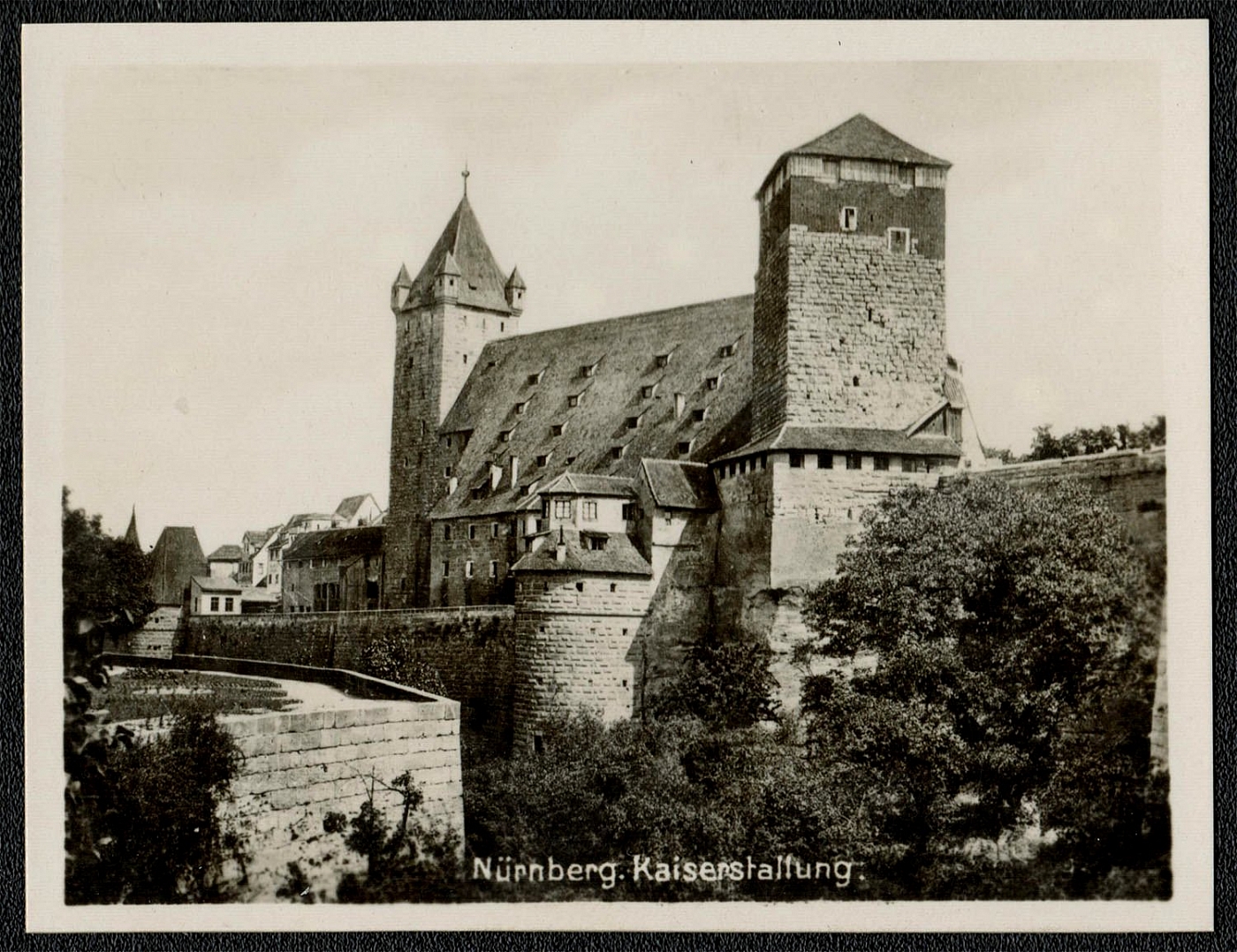
Nuremberg. Photo The granary (Kornhaus) also called the Kaiserstallung
"Nurnberg owes its place in literary history to Hans Sachs and the other meistersanger. The inventions of its inhabitants include the pocket watch, gun casting, the air gun, gunlocks, terrestrial and celestial globes (the first of which was made before Columbus discovered the Americas), the art of wire-drawing and the clarinet. Nurnberg was the first imperial town to embrace Protestantism (about 1525). The first blow to its prosperity was the discovery of the sea-route to India in 1497. and the second was inflicted by the Thirty Years’ War which Gustavus Adolphus was besieged here for ten weeks by Wallenstein. The downfall of the town was accelerated by the illiberal policy of its patrician rulers. In 1803 Niirnberg was allowed to maintain its nominal position as a free city, but in 1806 it was annexed to Bavaria. The Fourteenth Edition of the Encyclopaedia Britannica (1929) noted: “Considerable sections of the ancient walls and moat still remain. of the 365 bastions which formerly strengthened the walls, nearly 100 are still in situ, and a few of the old gateways have also been preserved. Most of the streets are narrow and crooked, and the majority of the houses have their gables turned towards the street. The general type of architecture is Gothic, but the rich details, which are lavished with especial freedom in the interior courts, are usually borrowed from the Renaissance. Most of the private dwellings date from the 16""' century, and there are practically none of earlier date than the 15'h century. The roofs are of red tile."
Unsold
866
-
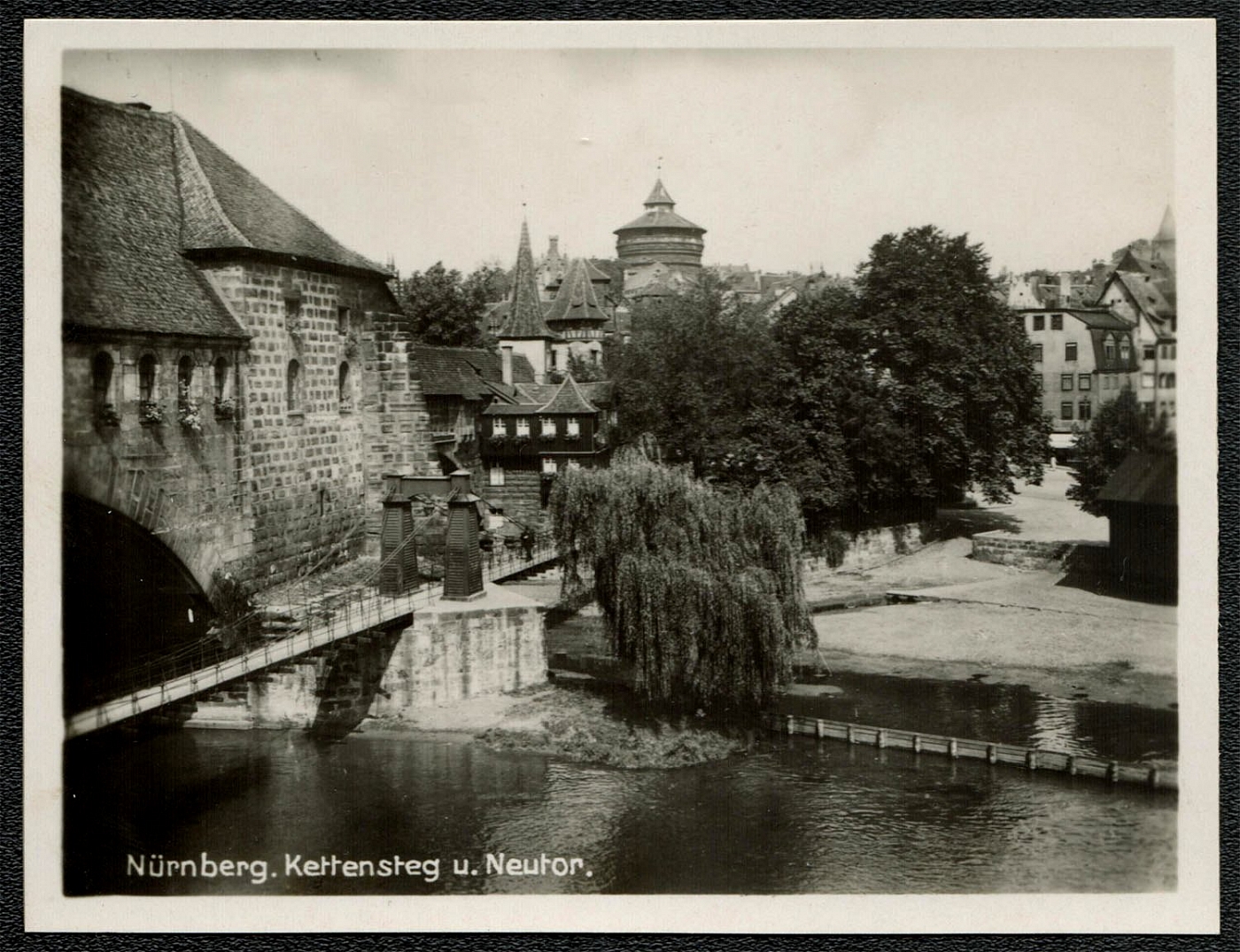
Nuremberg. Photo Ketten Bridge and the New Gateway
"“The old castle (Kaiserschloss). is placed on a rock on the north side of the town. This dates most probably from the early part of the 11""' century, but it received its present form mainly during the reign of Emperor Frederick I about 150 years later. It was restored in 1854-56. In the Heidenturm are two late Romanesque chapels, one above the other. Other parts of the castle are the pentagonal tower, the oldest building in the town, wherein are preserved the famous “iron virgin of Nurnberg,” and other instruments of torture. the granary (Komhaus). also called the Kaiserstallung-, and the Vestnertor or Vestnerturm. The castle of Nurnberg was a favorite residence of the German sovereigns in the middle ages, and the imperial regalia were kept here from 1424 to 1796. Near it are the remains of the burg of the Hohenzollerns. the principal existing part of which is the chapel of St. Walpurgis, which was destroyed with the rest of the building in 1420, but was restored in 1892. Not far from these ruins stands the Luginsland, a stronghold with four corner turrets, said to have been built by the burghers in 1367 as a watchtower against the burg of the Hohenzollerns. Nurnberg contains several churches, the finest of which are those of St. Lorenz, of St. Sebaldus and of Our Lady. All three are Gothic edifices and are notable for their elaborately carved doorways, in which free play has been given to the exuberant fancy of the Gothic style. The Church of St. Lorenz, the largest of the three, was built in the 13""' and 14""’ centuries and has recently been restored. In it is the masterpiece of the sculptor, Adam Kraft, consisting of a ciborium, or receptacle for the host, in the form of a florid Gothic spire 65 ft. high. the carving of this work is exquisitely minute and delicate. The shrine of St. Sebaldus. consisting of a bronze sarcophagus and canopy, in the richest Gothic style, adorned with numerous statues and reliefs, is looked upon as one of the greatest achievements of German art. It was executed by Peter Vischer, the celebrated artist, in bronze, who was occupied on the work for 13 years (1506-19). The Church of Our Lady possesses some fine old stained-glass windows and some paintings by Michael Wohlgemuth. The Tuchersche altar, with its winged picture, is one of the finest works of the Nurnberg School about the middle of the 15""' century. Other noteworthy churches are those of St. Jacob, founded about 1200 and restored in 1824. and of St. Aegidius."
Unsold
867
-
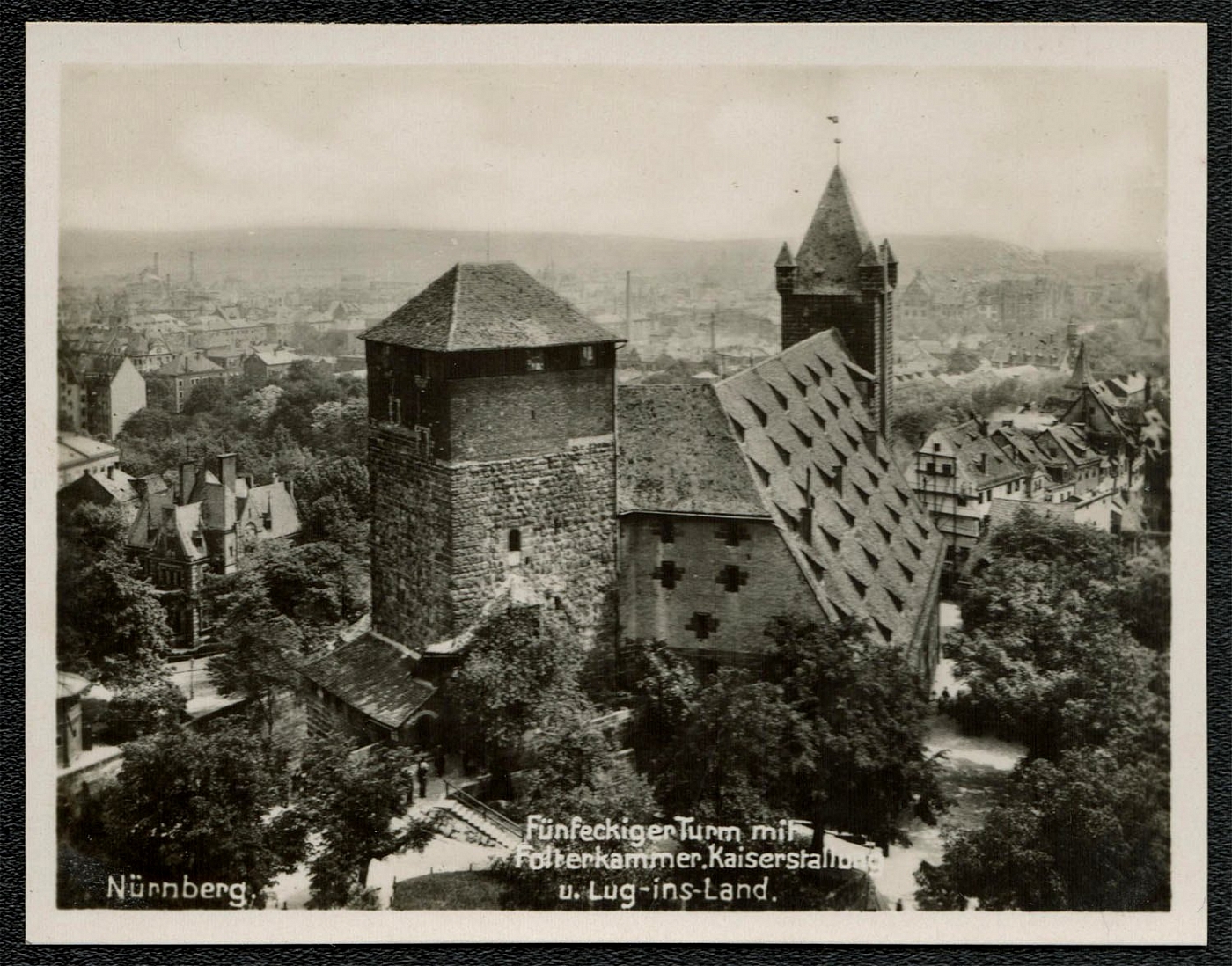
Nuremberg. Photo Funfeckiger Tower with Folterkammer, Kaiserstallung and Lug-ins-Land
"“The town hall (Rathaus), erected in the Italian style in 1616-19, contains frescoes by Albrecht Durer, and a curious stucco relief of a tournament held at Nurnberg in 1446. The building incorporated an older one of the 14""' century, of which the great hall, with its timber roof, is part. The most interesting secular buildings are the houses of the old patrician families. A special interest attaches to the dwellings of Diirer and Hans Sachs, the cobbler-poet. The streets are embellished with several fountains, the most noteworthy of which are the Schone Brunnen. 1385-96. in the form of a large Gothic pyramid, adorned with statues, and the Ganseinannchen or goose-manikin. The Germanic National Museum, established in a old Carthusian monastery, includes masterpieces by Holbein, Diirer, Wohlgemuth and others. The municipal library contains many thousands of manuscripts and books, some of which are of great rarity.” Nurnberg has always taken a leading role in German affairs. It was here that the first diet, or meeting of rulers, of every Holy Roman Emperor was held. And it was here. too. that Adolf Hitler staged the most grandiose political rallies of the National Socialist state . . ."
Unsold
868
-
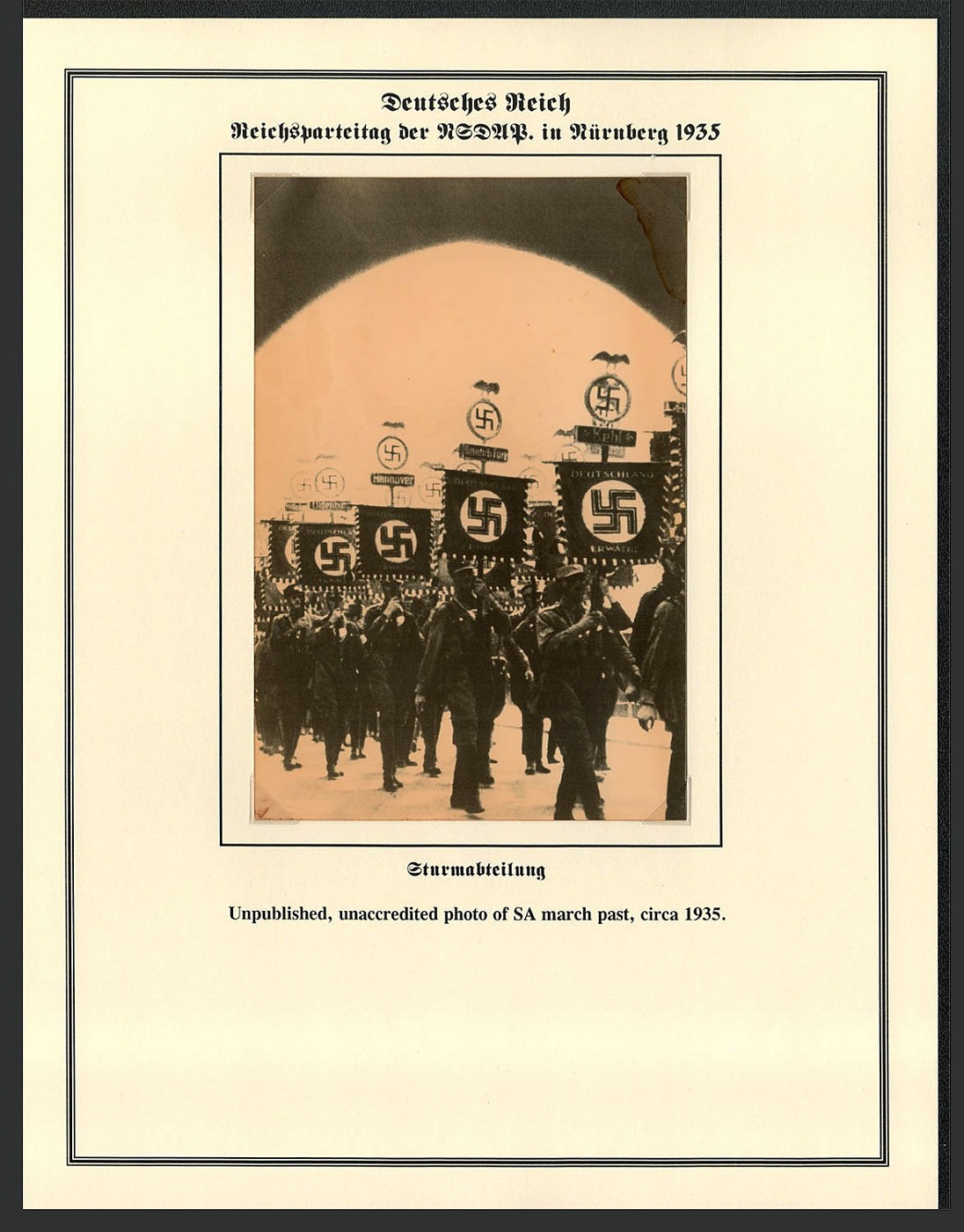
1935 Unpublished, unaccredited photo of SA march past, circa 1935.
Unpublished, unaccredited photo of SA march past, circa 1935.
Unsold
869
$55
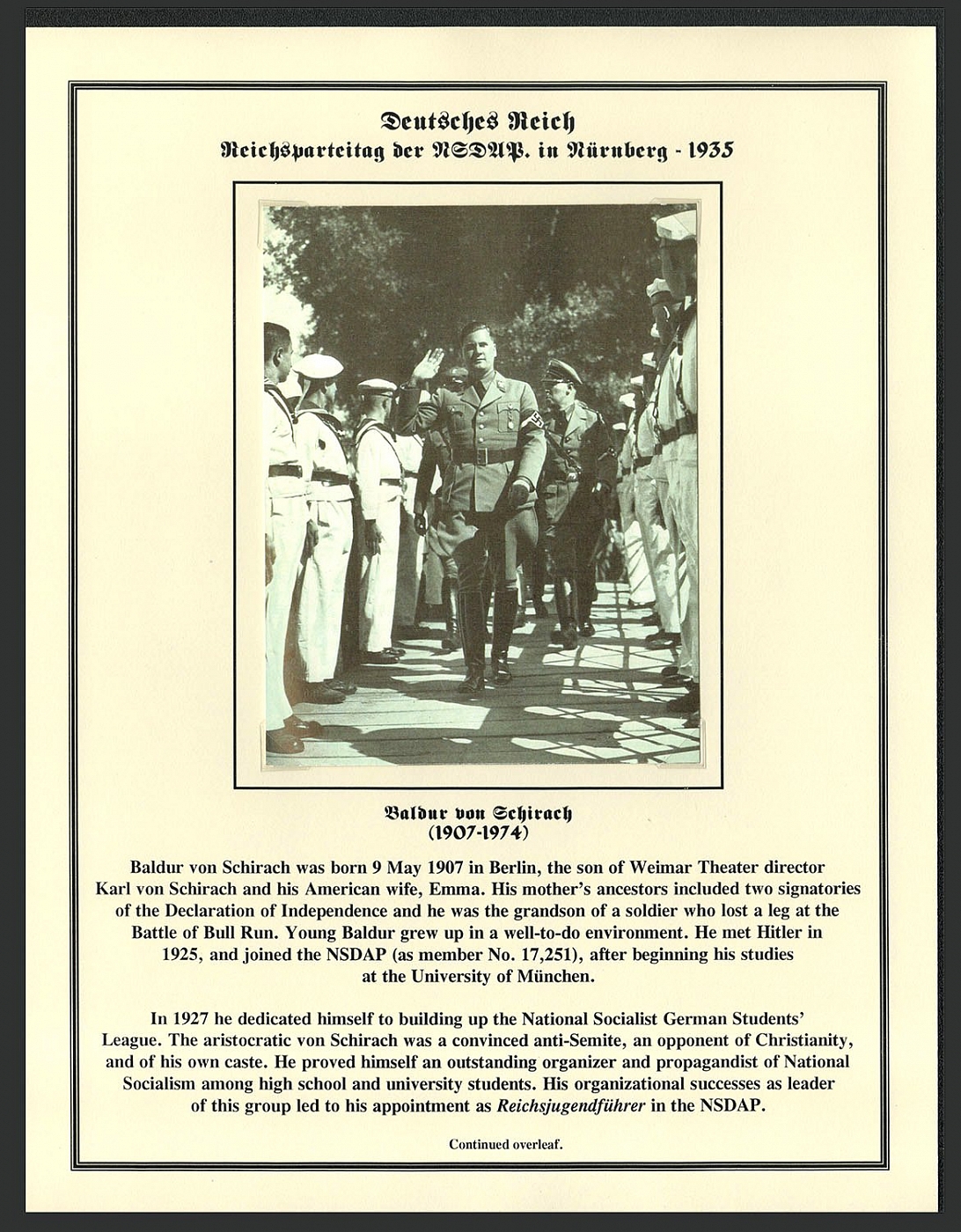
1935 Photo Baldur von Schirach
Baldur von Schirach was born 9 May 1907 in Berlin, the son of Weimar Theater director Karl von Schirach and his American wife, Emma. His mother’s ancestors included two signatories of the Declaration of Independence and he was the grandson of a soldier who lost a leg at the Battle of Bull Run. Young Baldur grew up in a well-to-do environment. He met Hitler in 1925, and joined the NSDAP (as member No. 17,251), after beginning his studies at the University of Miinchen. In 1927 he dedicated himself to building up the National Socialist German Students’ League. The aristocratic von Schirach was a convinced anti-Semite, an opponent of Christianity, and of his own caste. He proved himself an outstanding organizer and propagandist of National Socialism among high school and university students. His organizational successes as leader of this group led to his appointment as Reichsjugendfiihrer in the NSDAP.
Sold for:
$55
870
$25
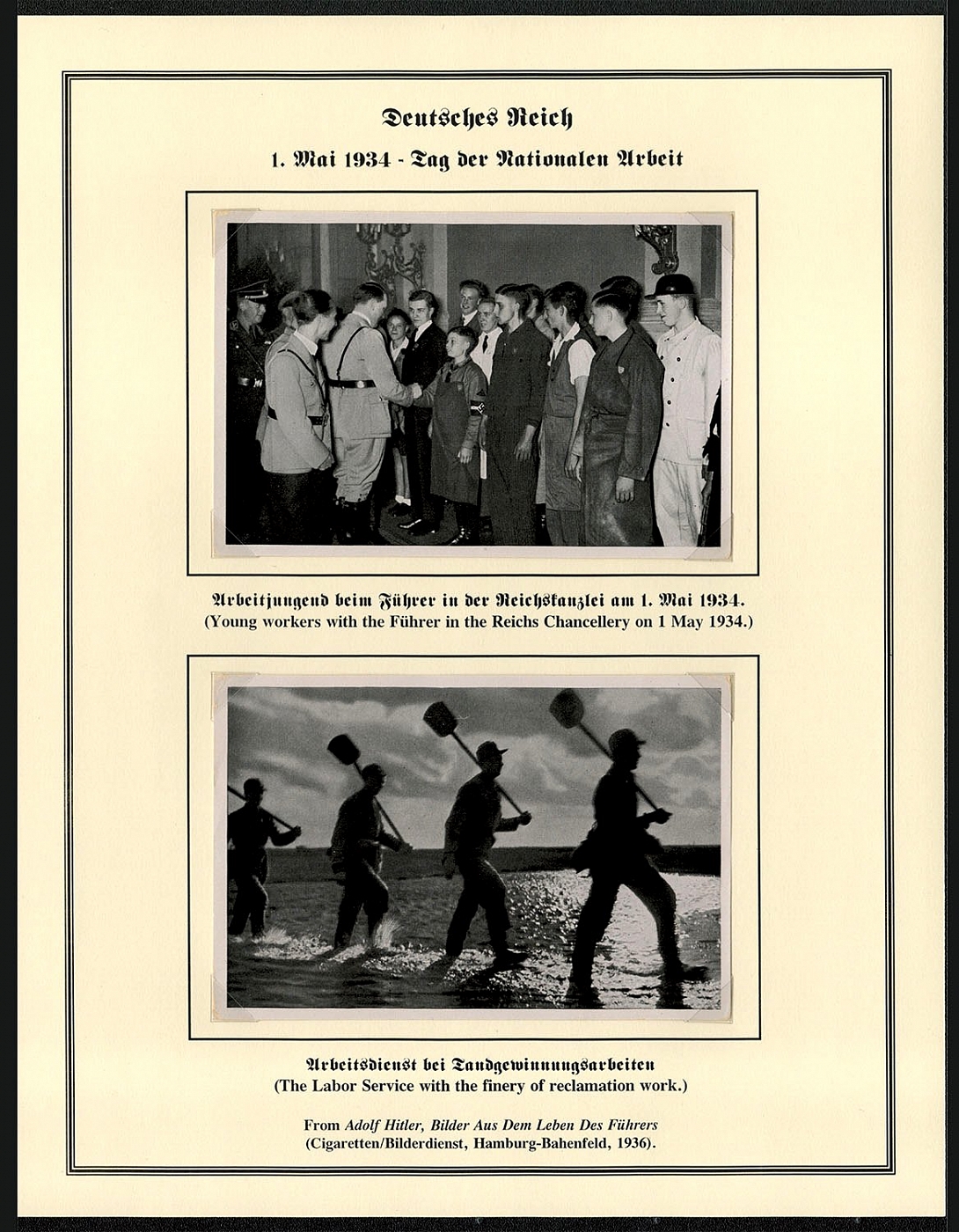
Big Lot of NSDAP Photohistory (19 pictures)
Big Lot of NSDAP Photohistory (19 pictures)
Sold for:
$25
871
$20
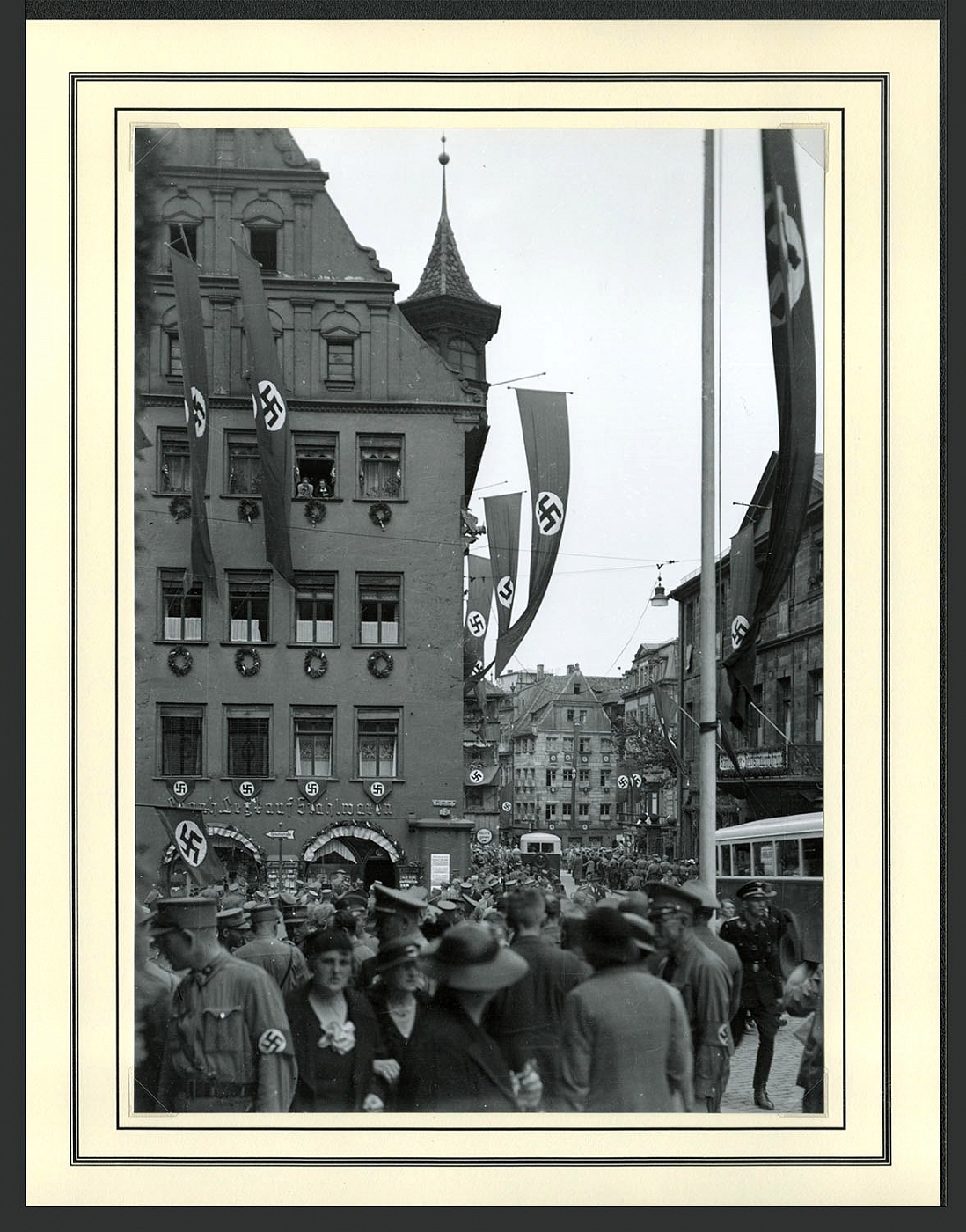
Big Lot of NSDAP Photohistory (11 pictures)
Big Lot of NSDAP Photohistory (11 pictures)
Sold for:
$20
872
$25
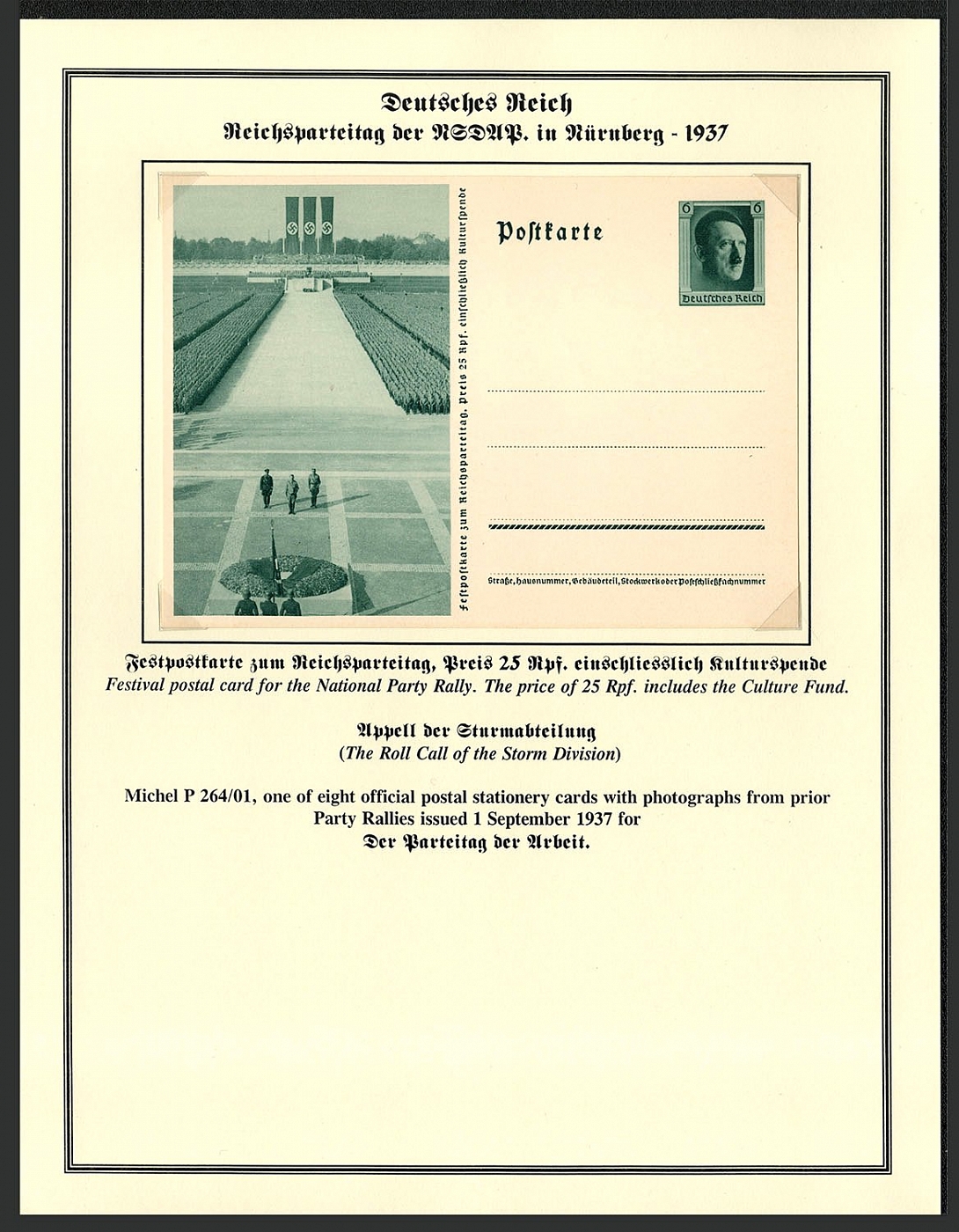
1937 Reich party rally of the NSDAP in Nuremberg. 8 mint postcard
1937 Reich party rally of the NSDAP in Nuremberg. 8 mint postcard
Sold for:
$25
873
$10
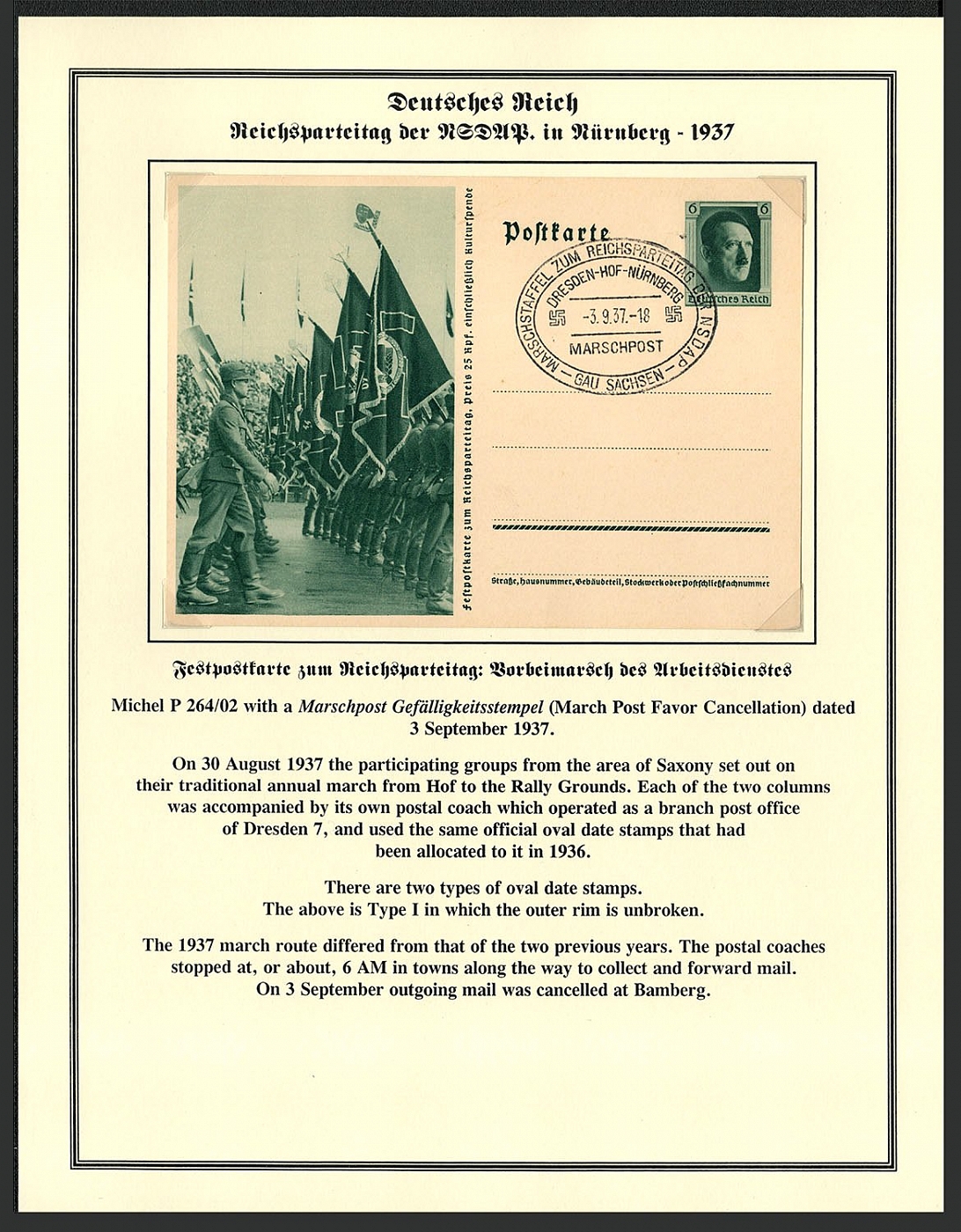
1937 Reich party rally of the NSDAP in Nuremberg. 3 used postcard with oval postmark
1937 Reich party rally of the NSDAP in Nuremberg. 3 used postcard with oval postmark
Sold for:
$10
874
$20
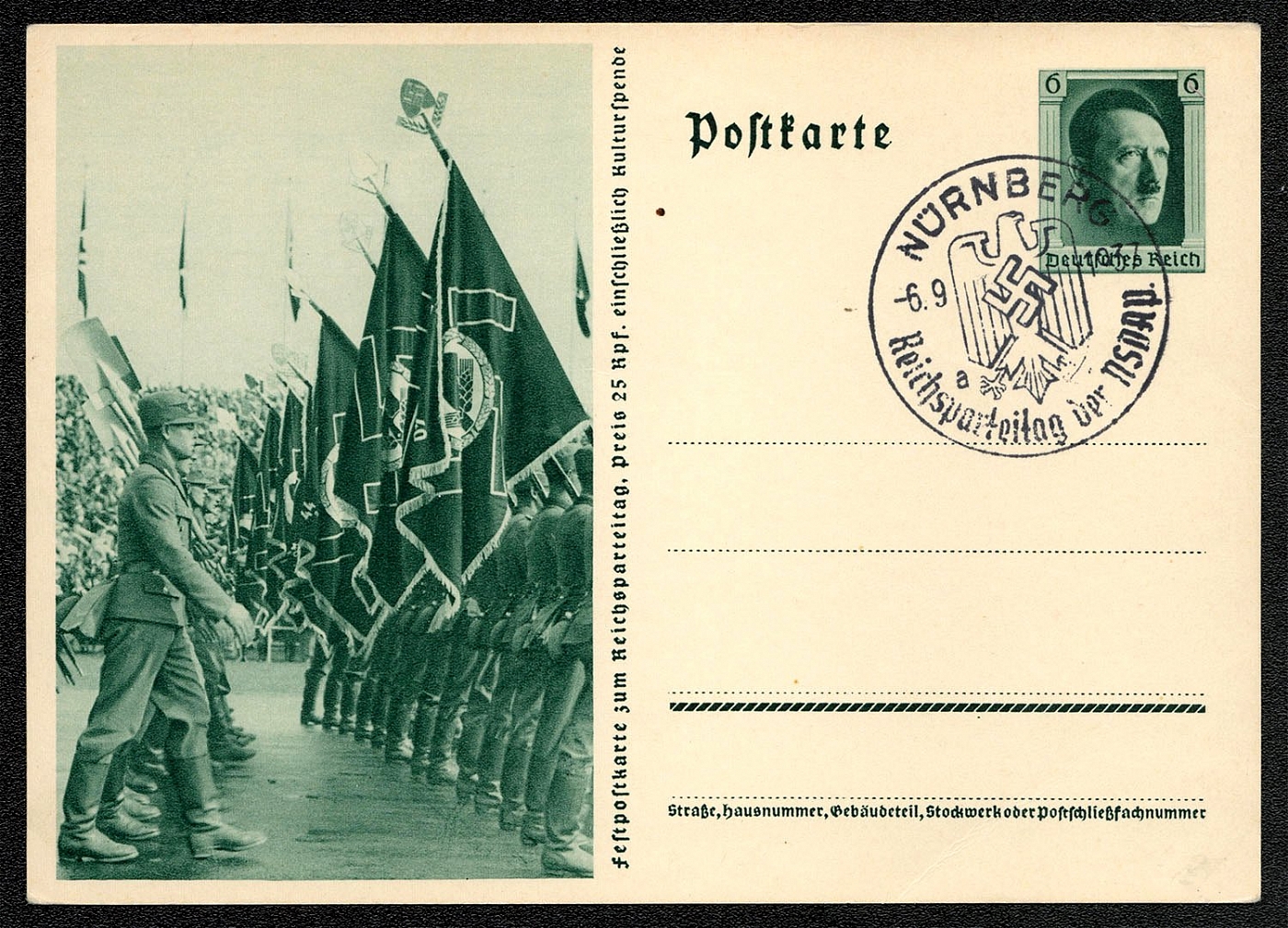
1937 Reich party rally of the NSDAP in Nuremberg. 7 used postcard Special postmark date 6.9.1937
1937 Reich party rally of the NSDAP in Nuremberg. 7 used postcard Special postmark date 6.9.1937
Sold for:
$20
875
$9
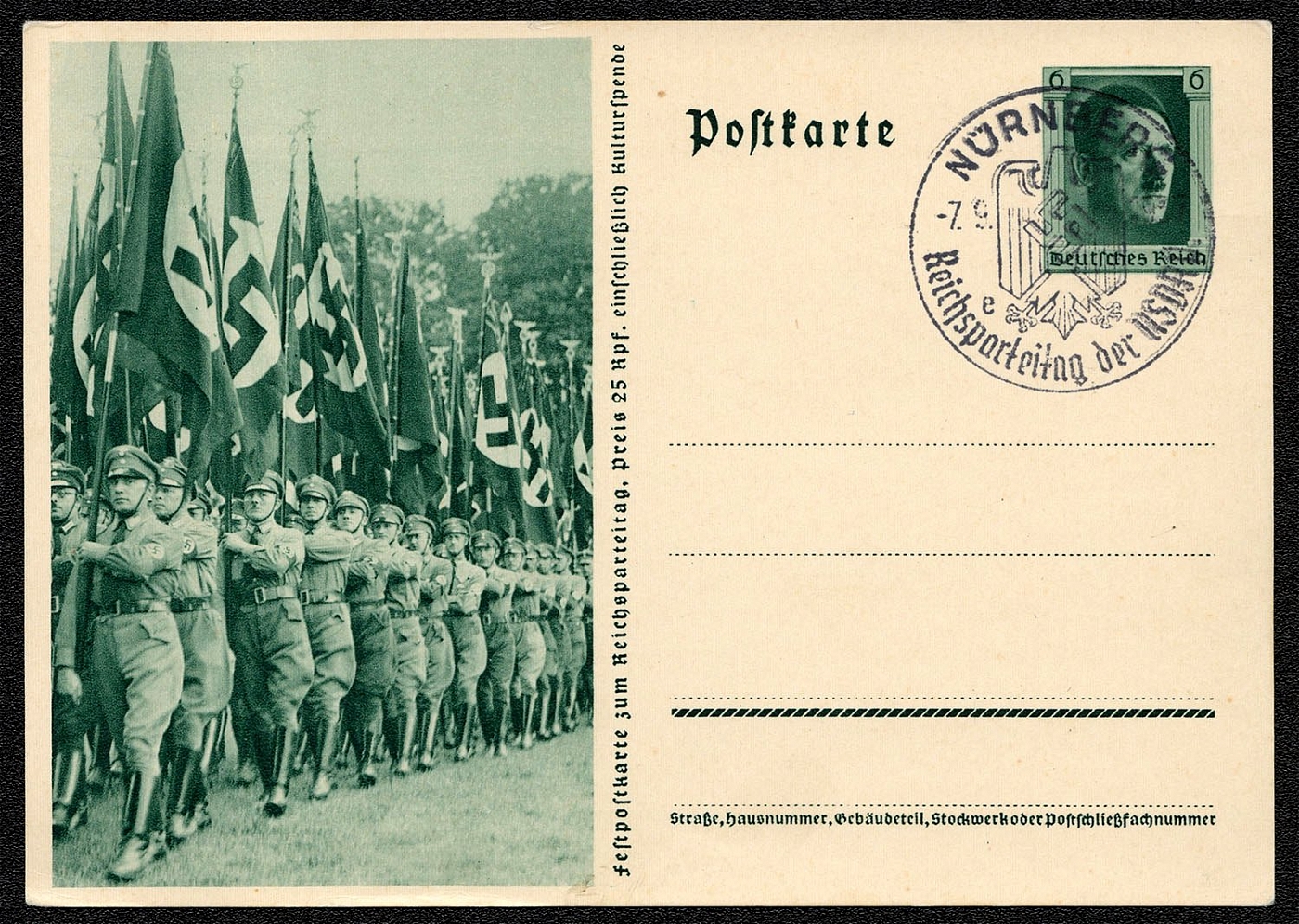
1937 Reich party rally of the NSDAP in Nuremberg. 3 used postcard Special postmark date 7.9.1937
1937 Reich party rally of the NSDAP in Nuremberg. 3 used postcard Special postmark date 7.9.1937
Sold for:
$9
876
$14
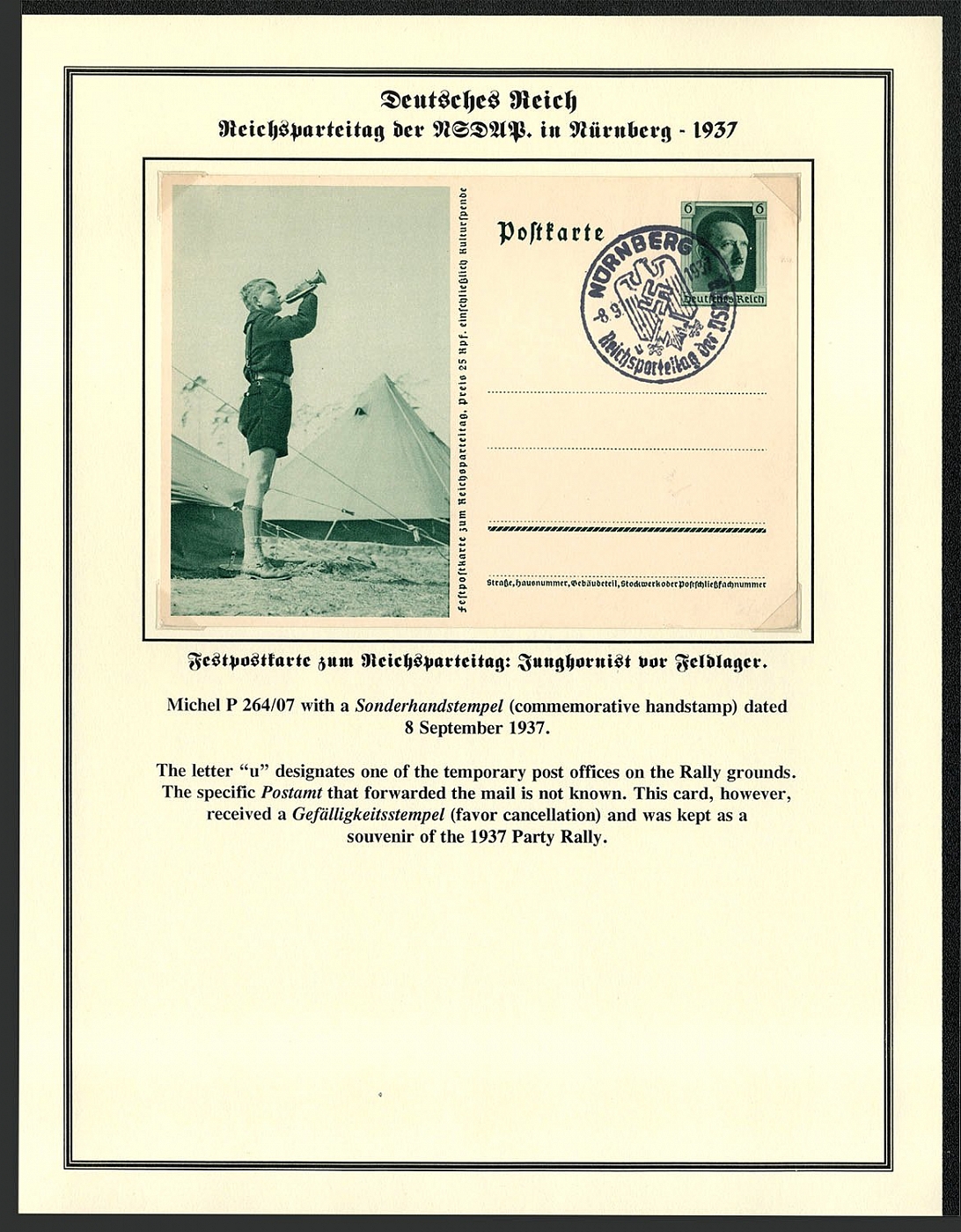
1937 Reich party rally of the NSDAP in Nuremberg. 5 used postcard Special postmark date 8-9.9.1937
1937 Reich party rally of the NSDAP in Nuremberg. 5 used postcard Special postmark date 8-9.9.1937
Sold for:
$14
877
$10
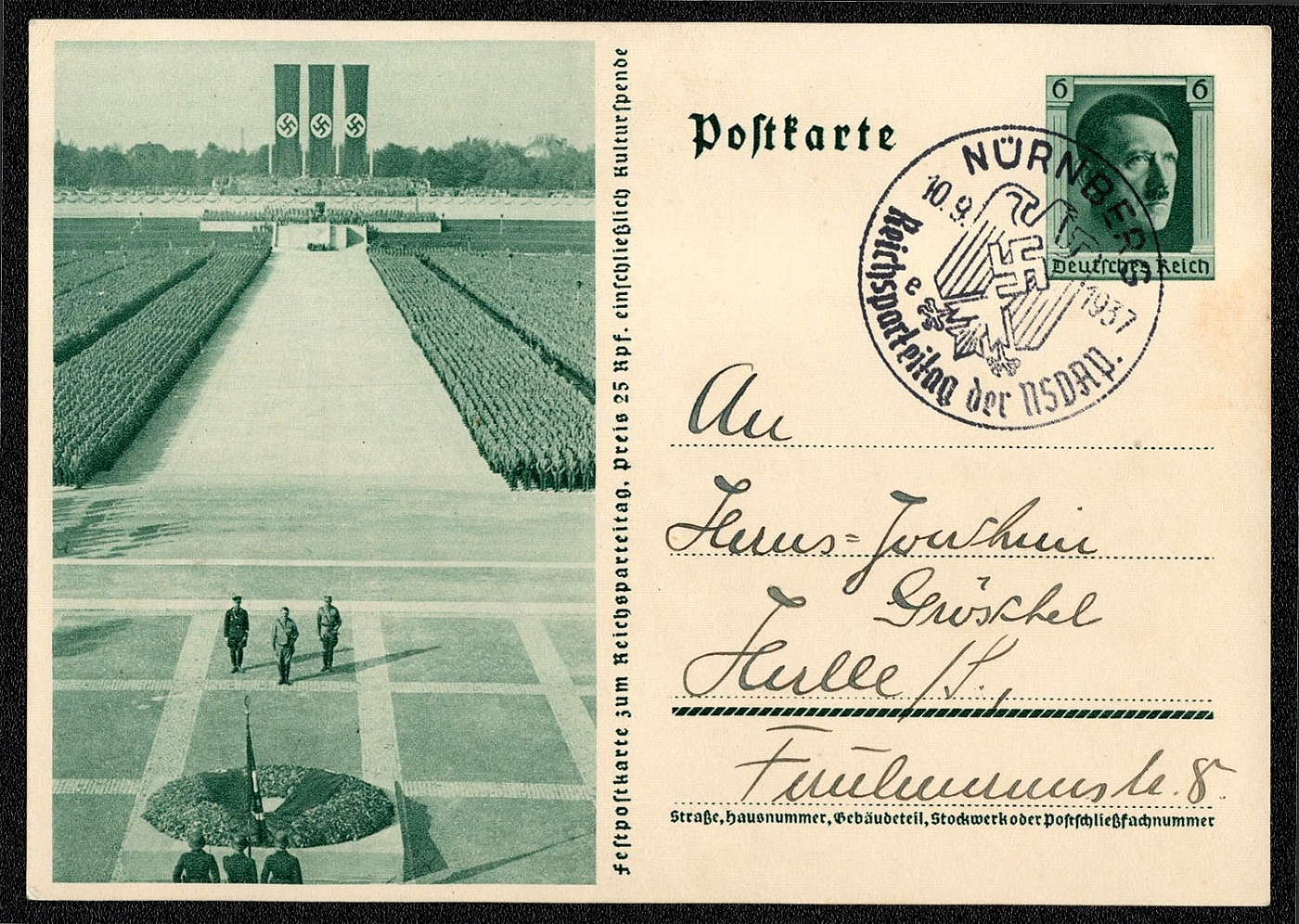
1937 Reich party rally of the NSDAP in Nuremberg. 5 used postcard Special postmark date 10.9.1937
1937 Reich party rally of the NSDAP in Nuremberg. 5 used postcard Special postmark date 10.9.1937
Sold for:
$10
878
$35
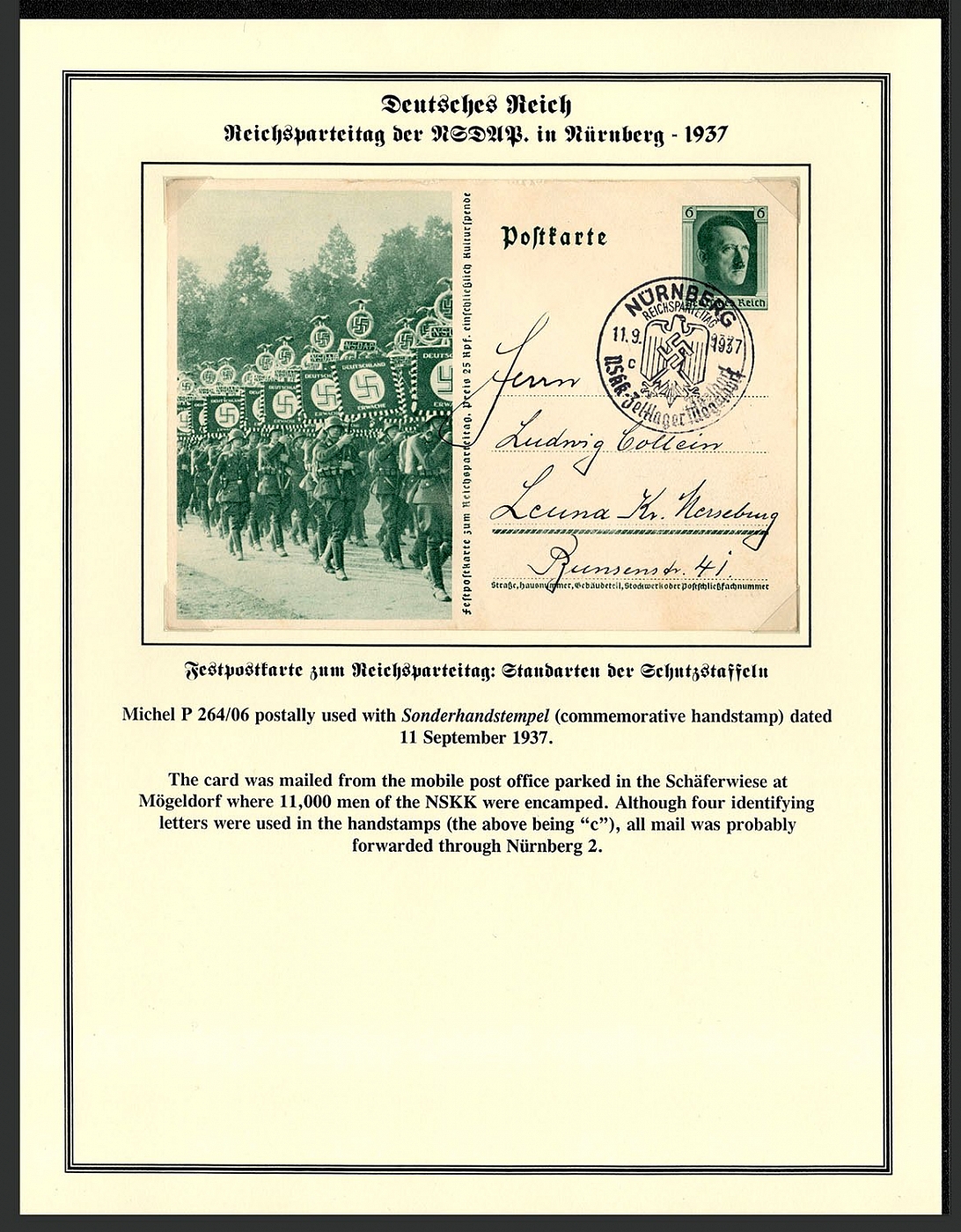
1937 Reich party rally of the NSDAP in Nuremberg. 9 used postcard Special postmark date 11.9.1937
1937 Reich party rally of the NSDAP in Nuremberg. 9 used postcard Special postmark date 11.9.1937
Sold for:
$35
Lot Number
Price
879
$30
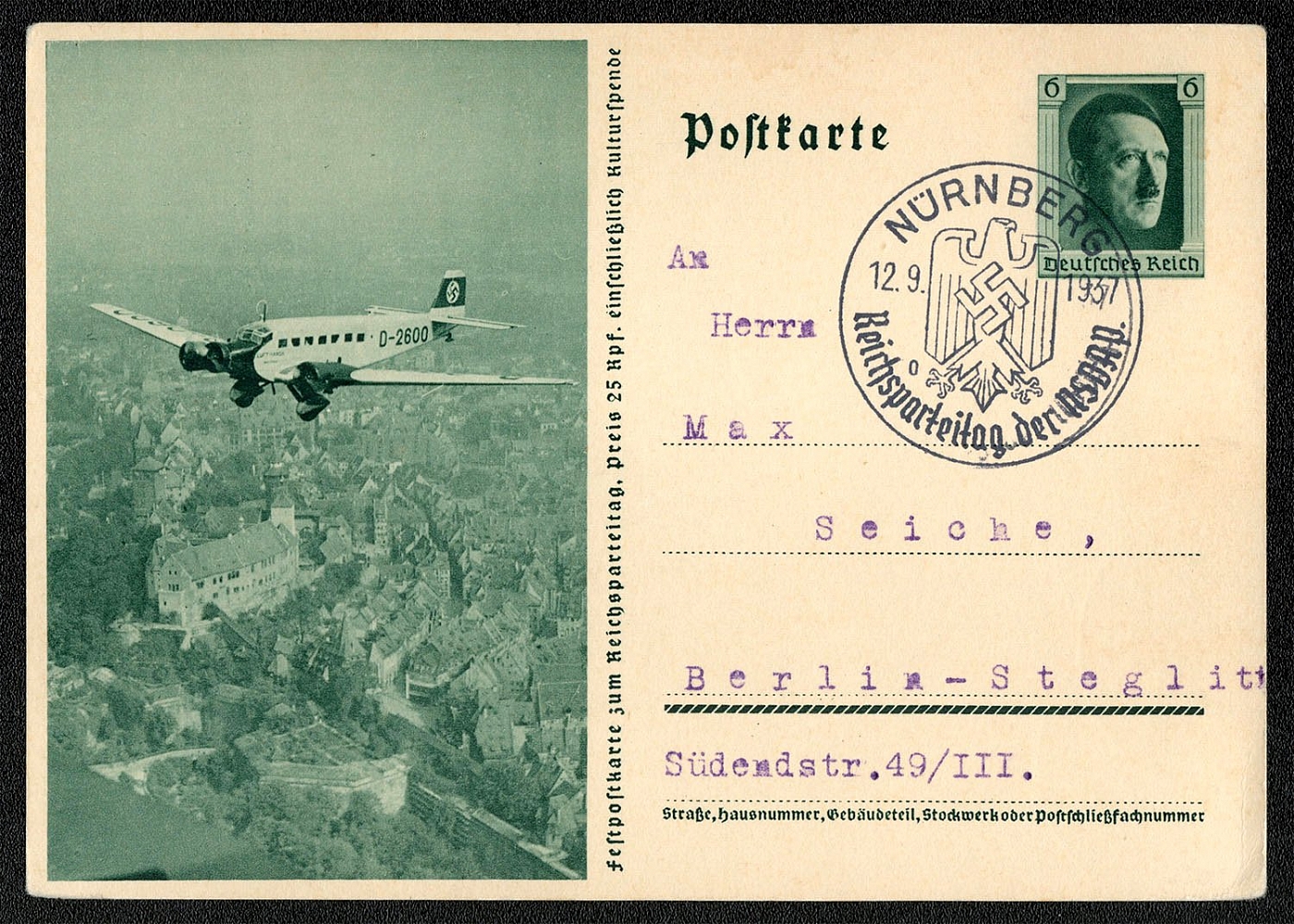
1937 Reich party rally of the NSDAP in Nuremberg. 10 used postcard Special postmark date 12-14.9.1937
1937 Reich party rally of the NSDAP in Nuremberg. 10 used postcard Special postmark date 12-14.9.1937
Sold for:
$30
880
-
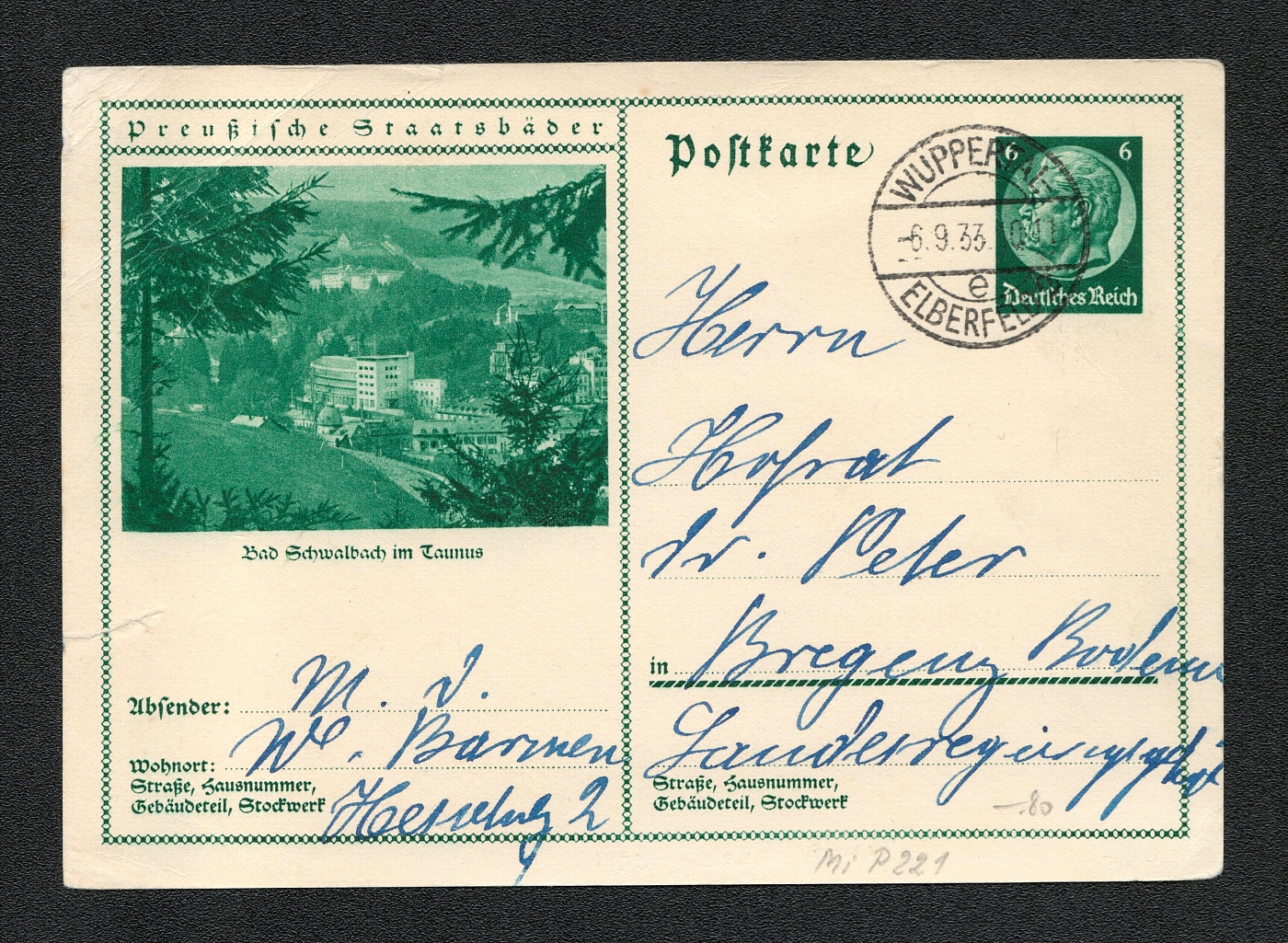
881
$5
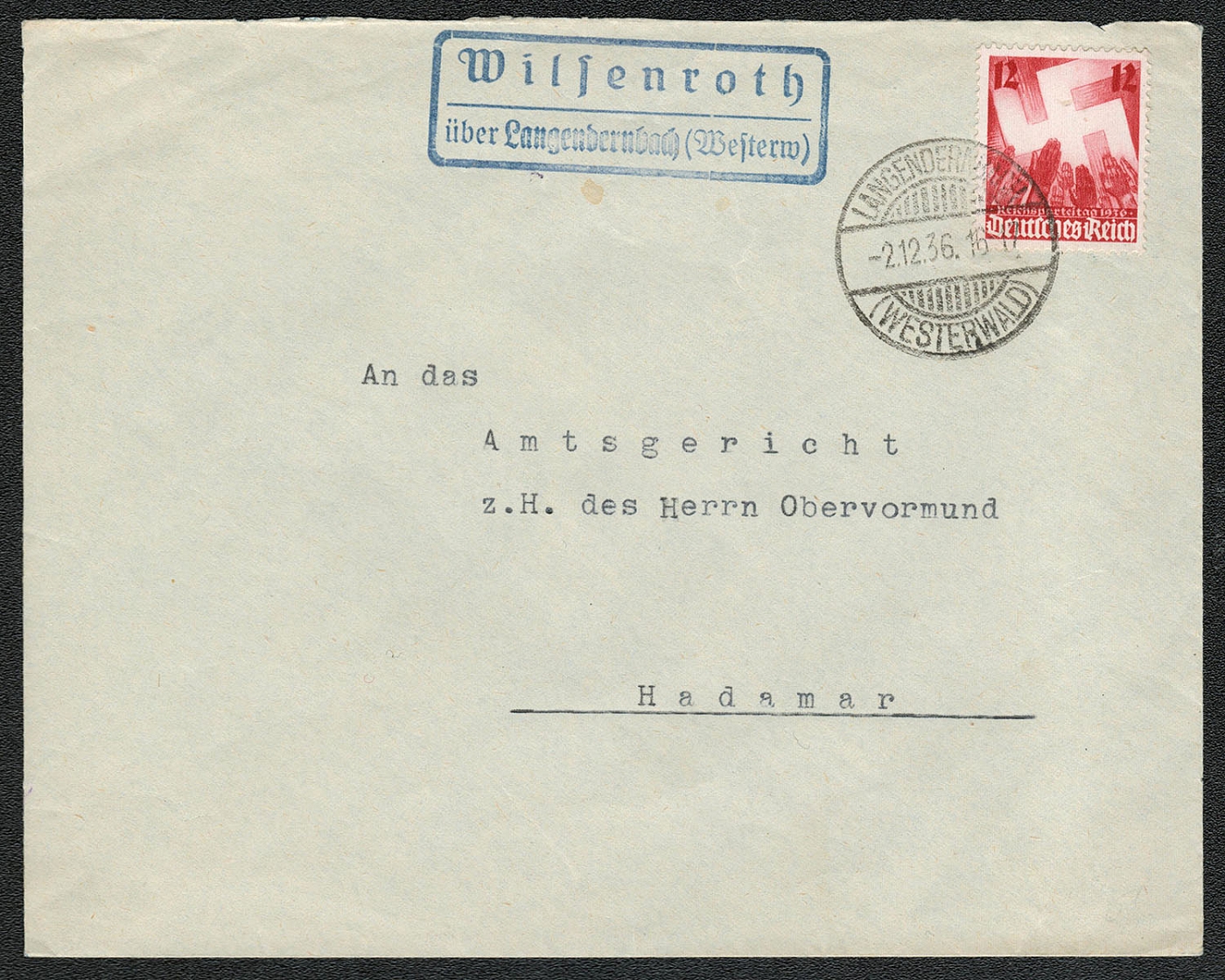
882
-
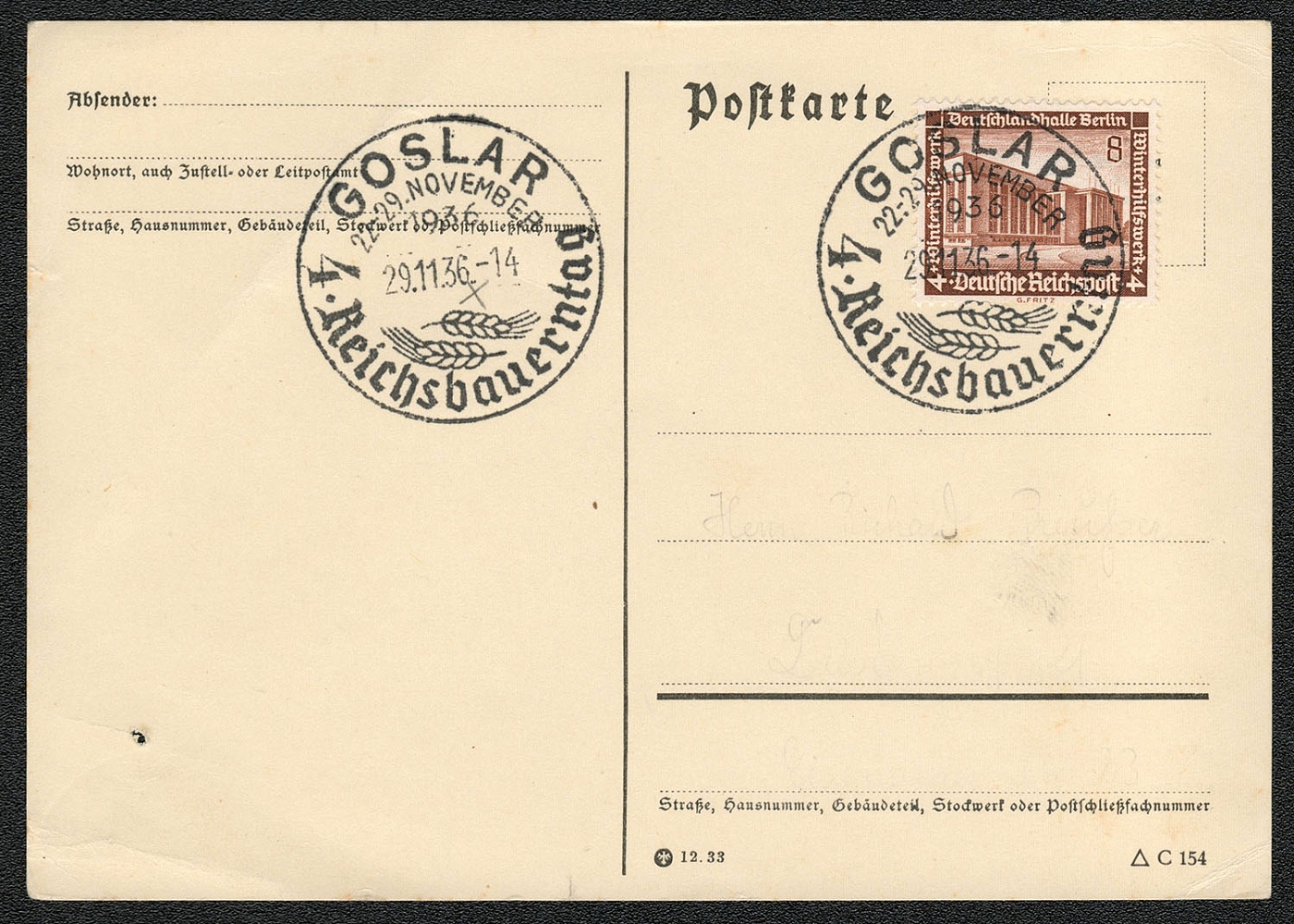
883
-
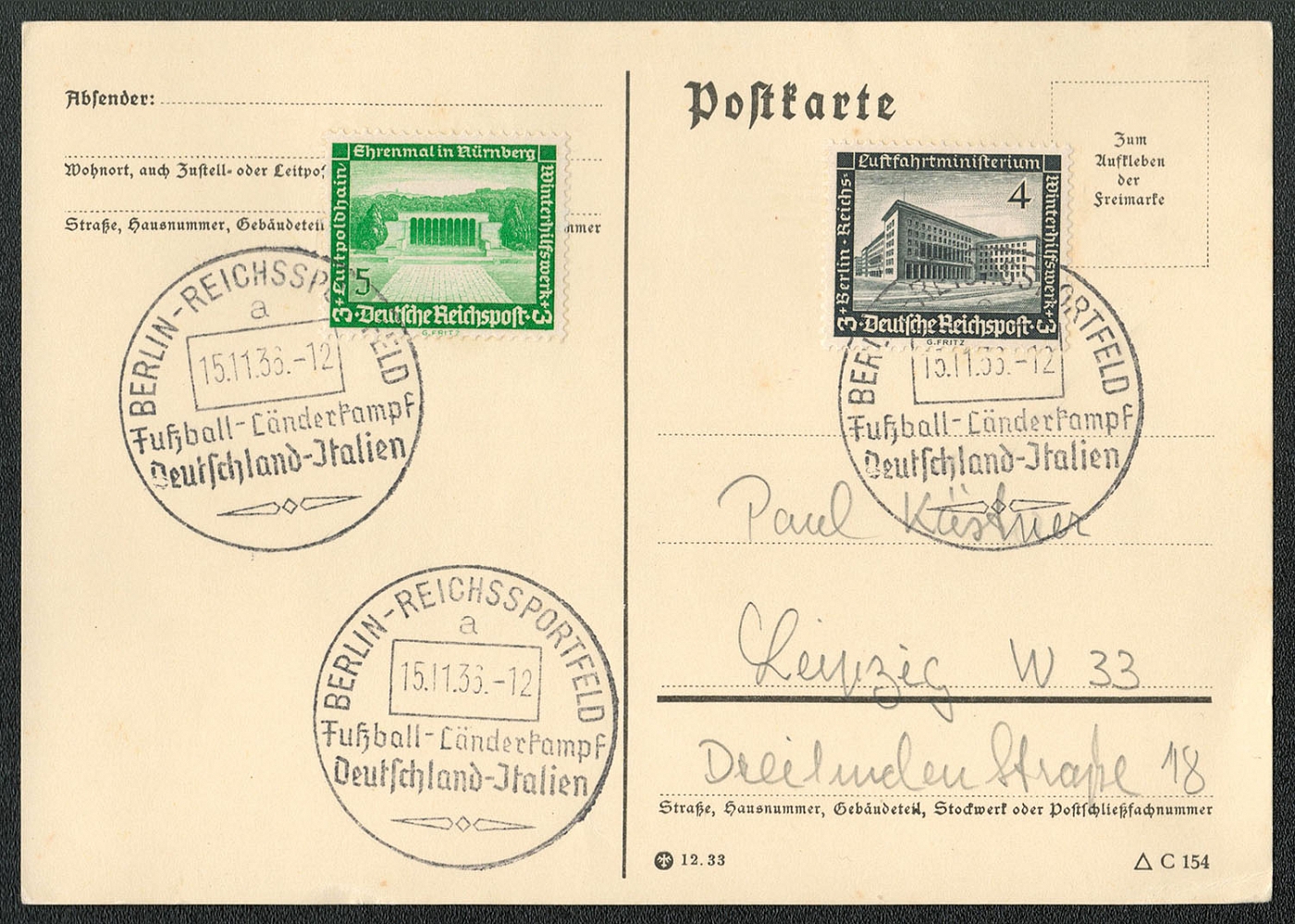
1936 Berlin - Reichssportfeld Specail Postmark
1936 Berlin - Reichssportfeld Specail Postmark
Unsold
884
-
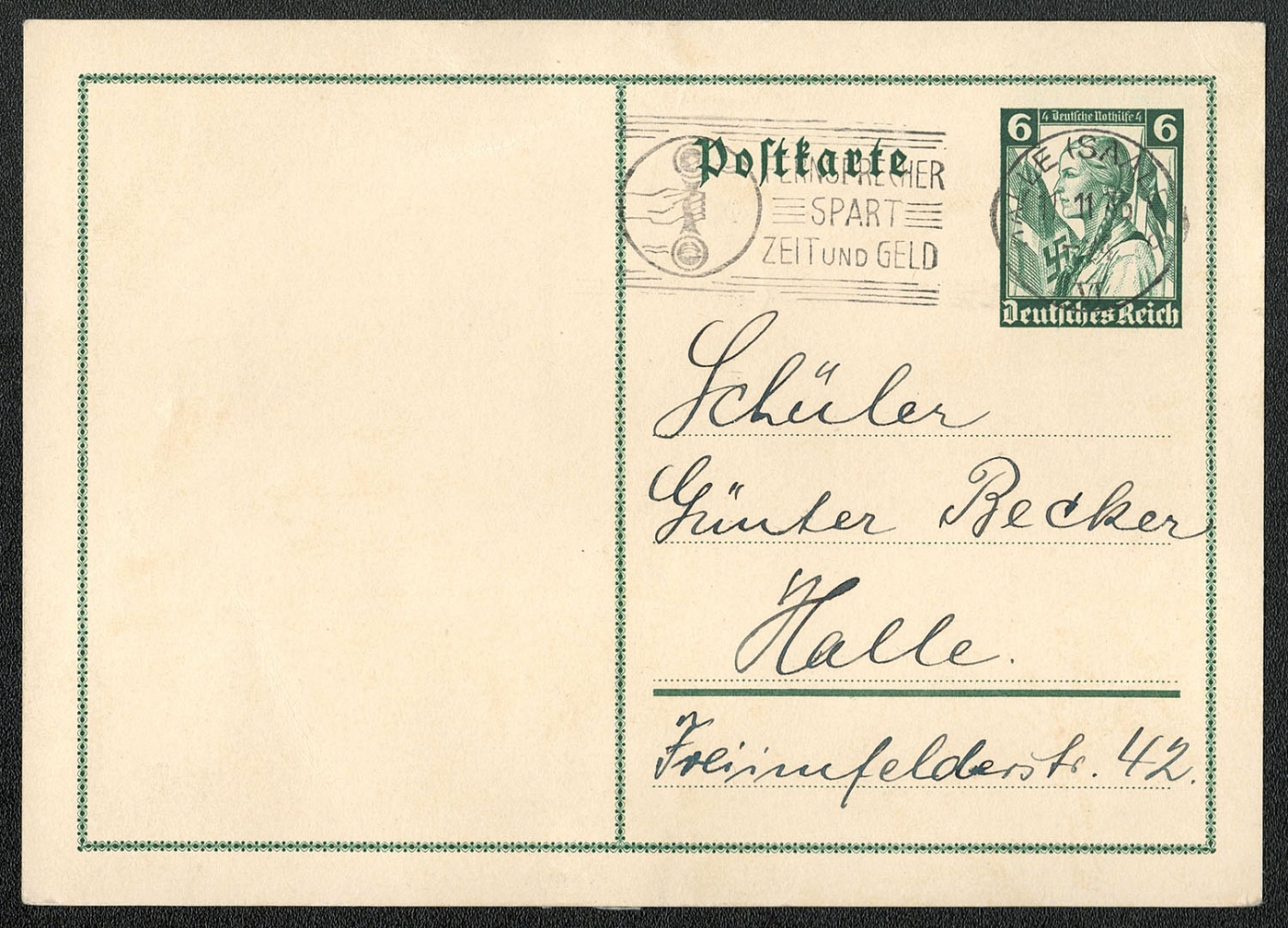
885
-
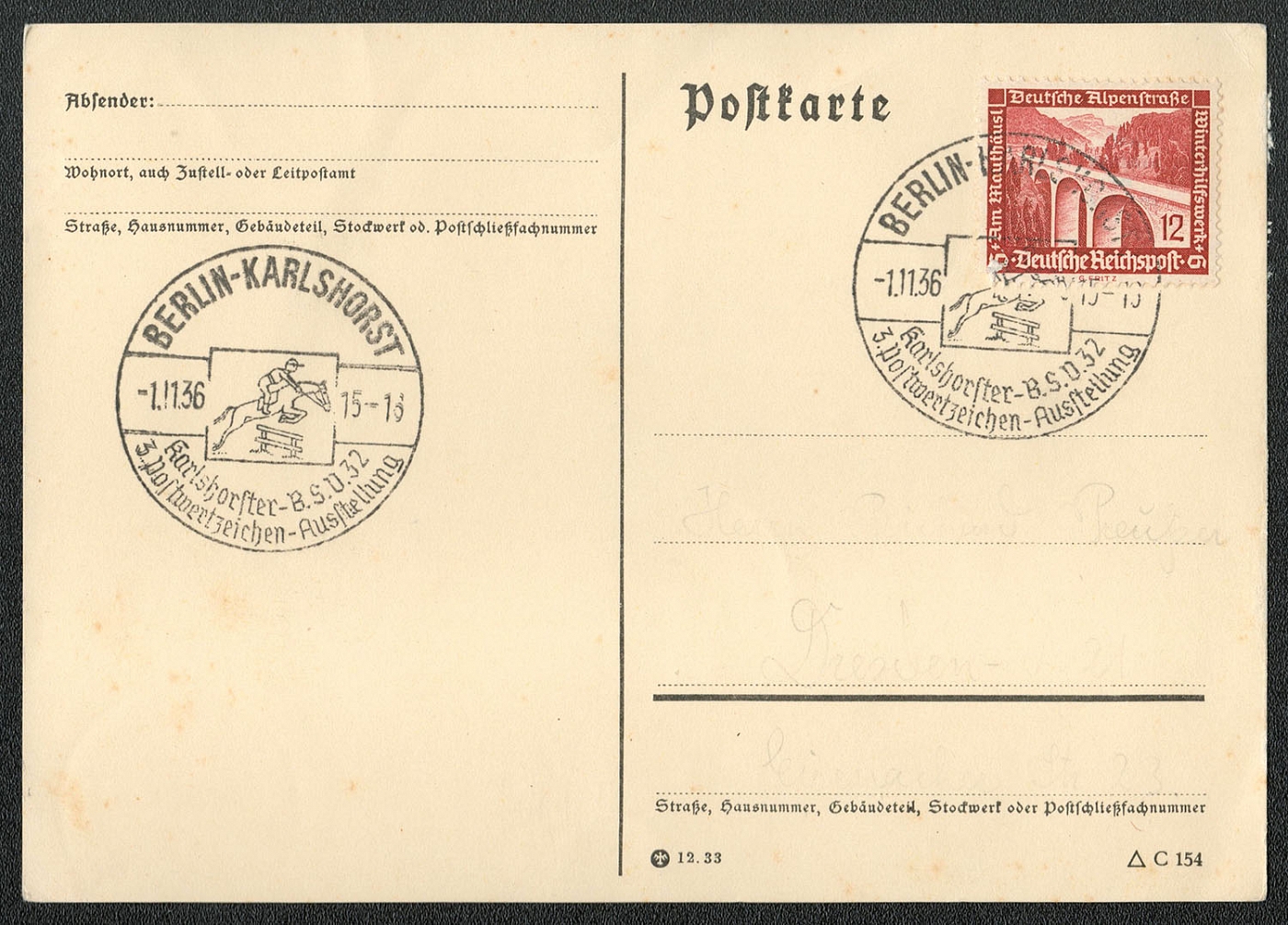
886
-
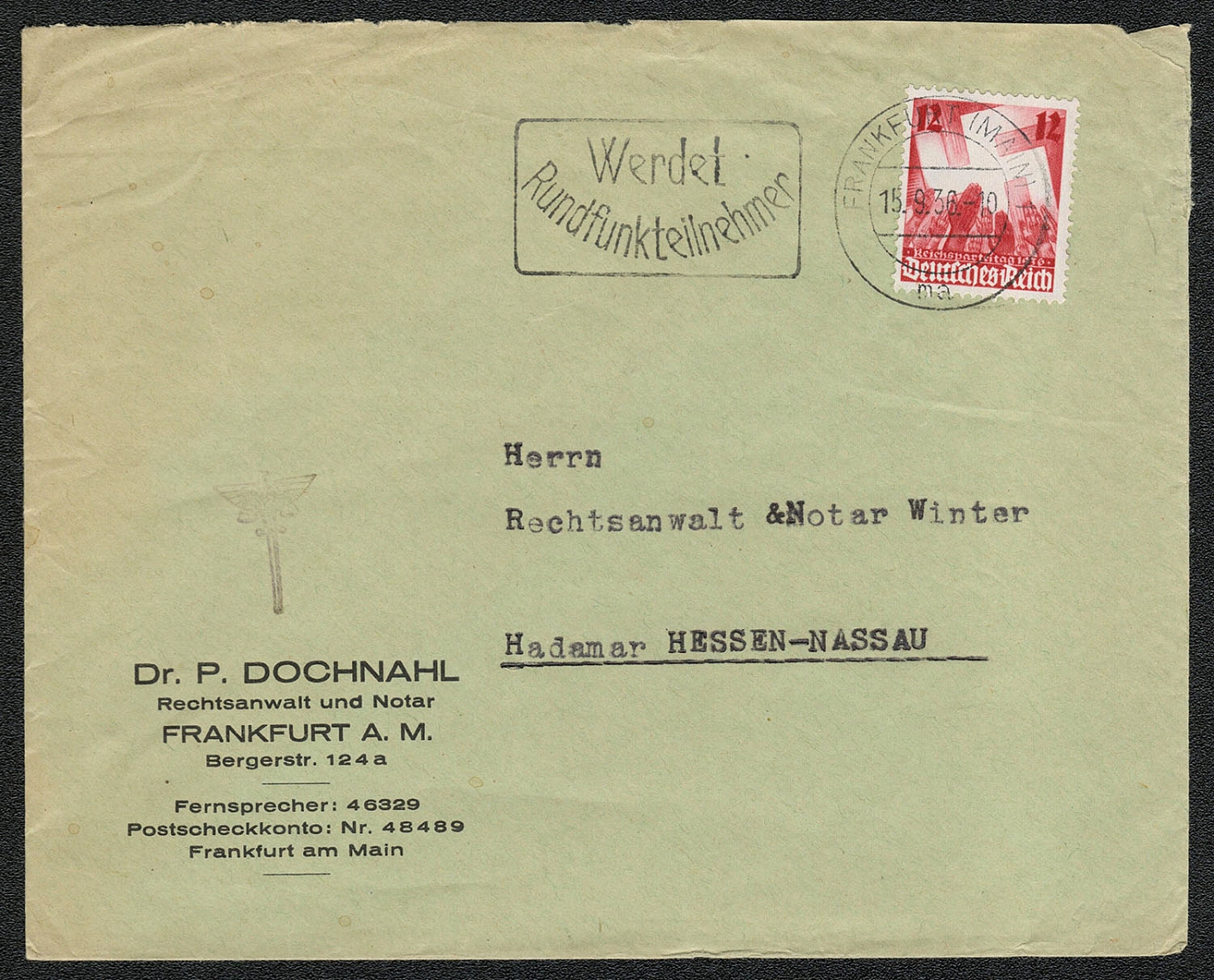
1936 Frankfurt Specail Postmark Become a radio subscriber
1936 Frankfurt Specail Postmark Become a radio subscriber
Unsold
887
-
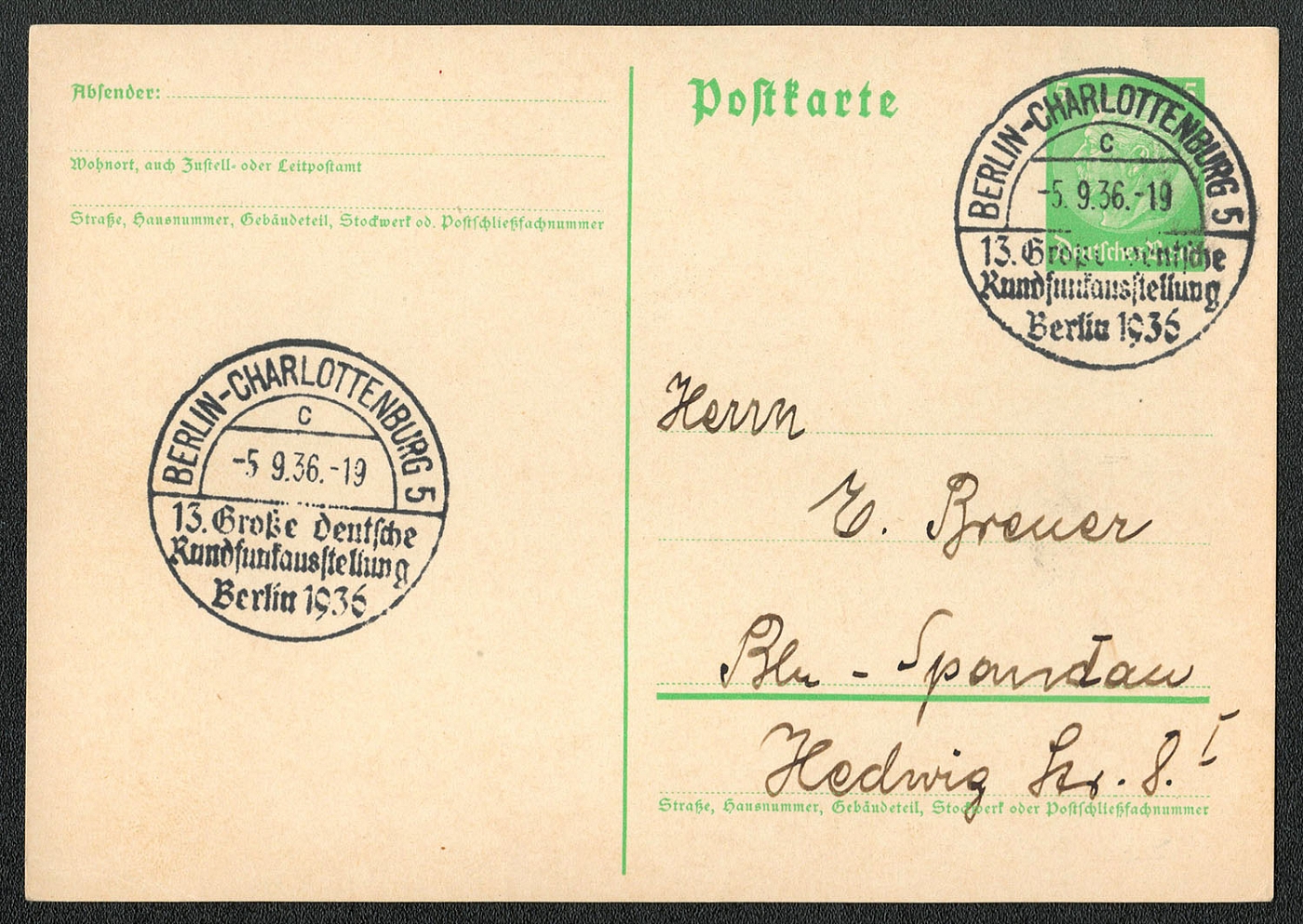
888
-
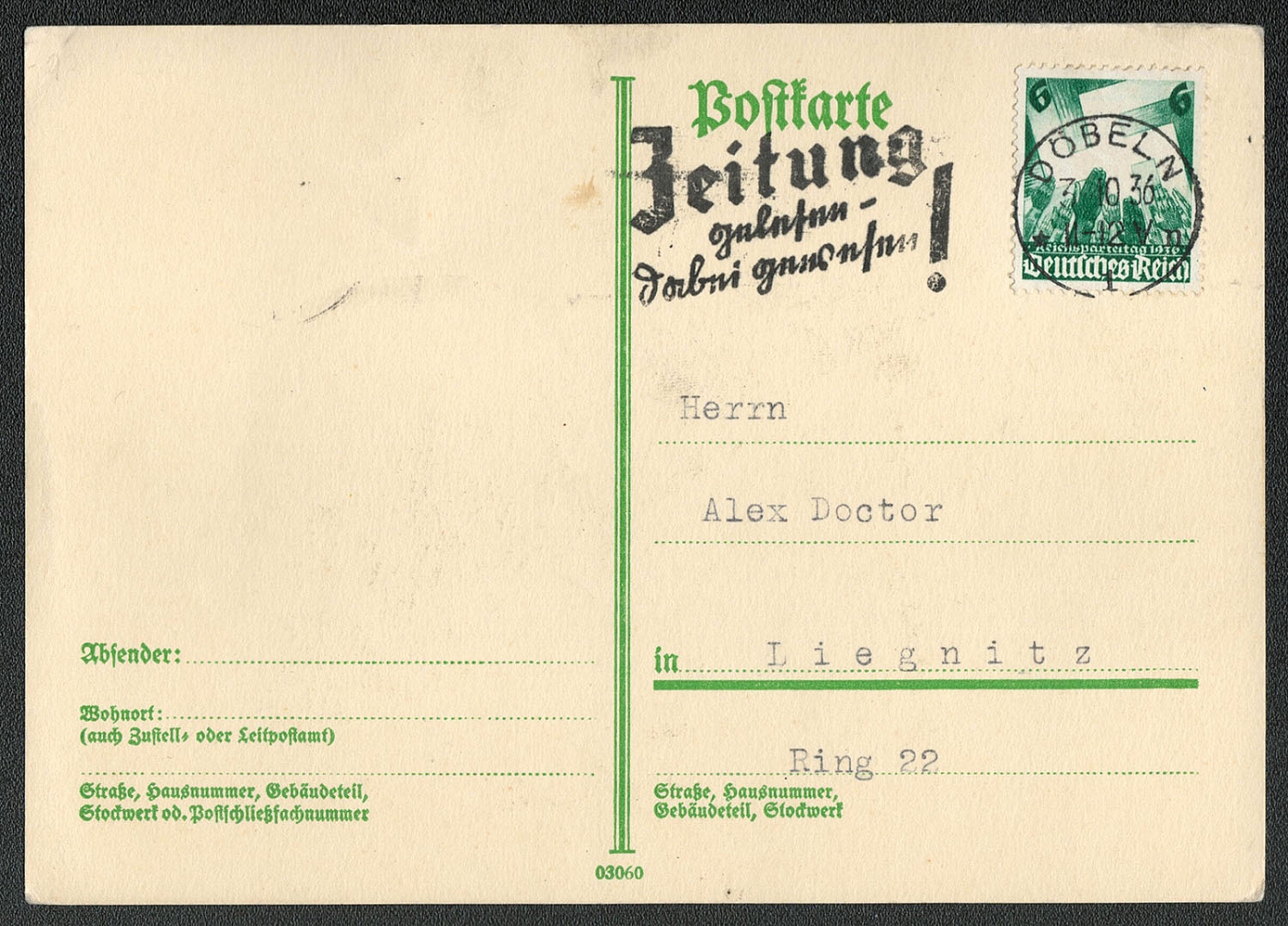
889
-
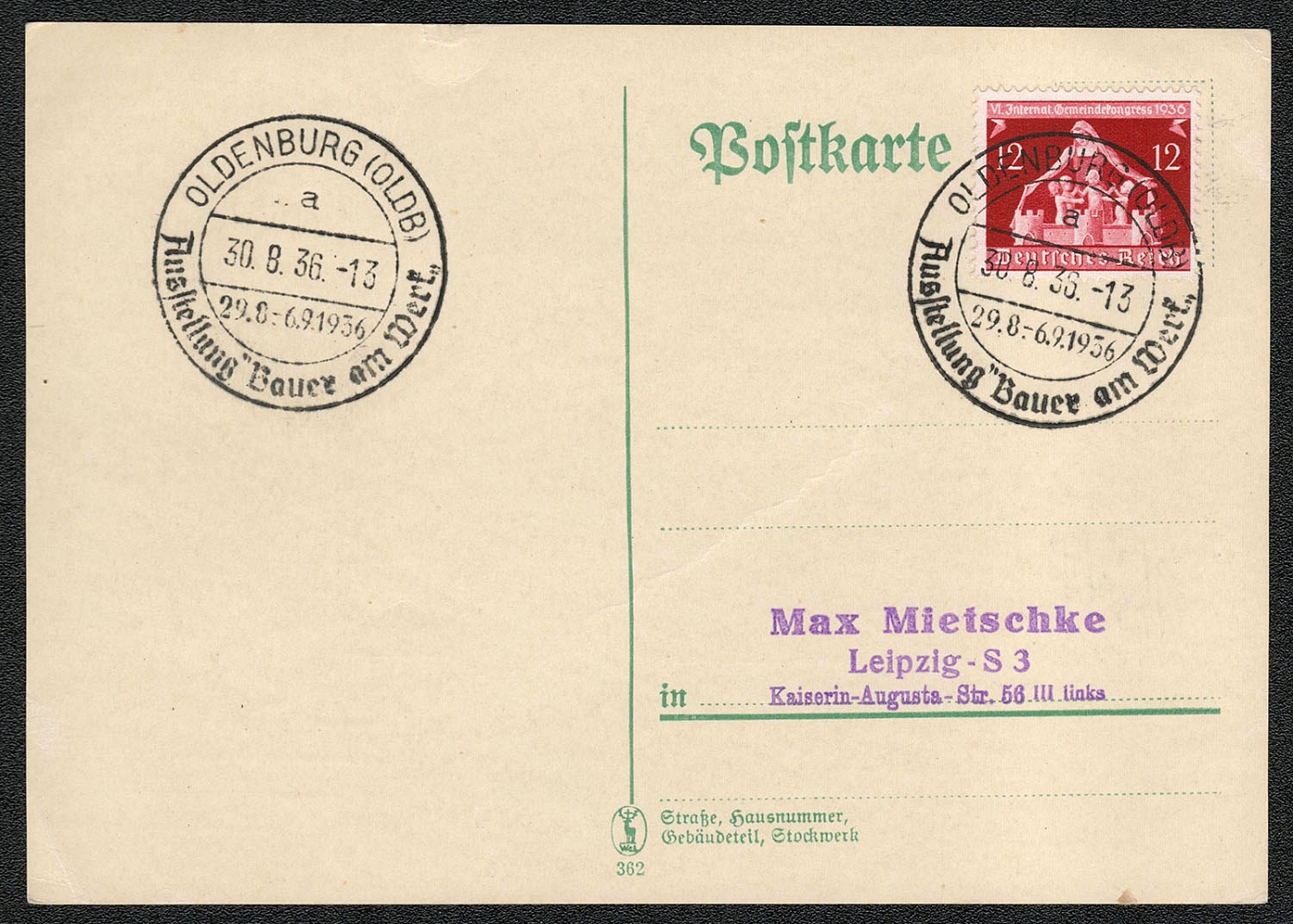
890
$5
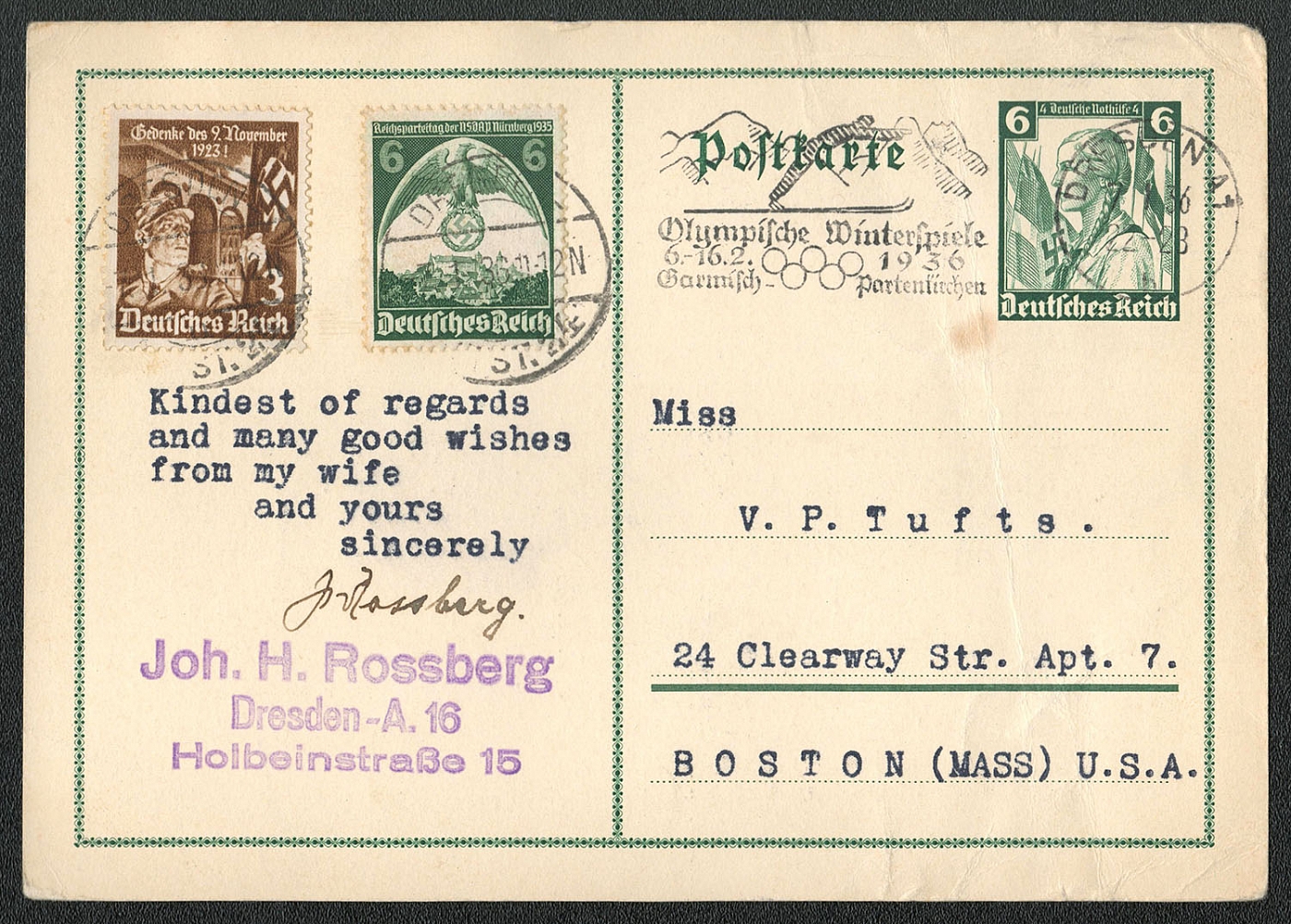
891
$5
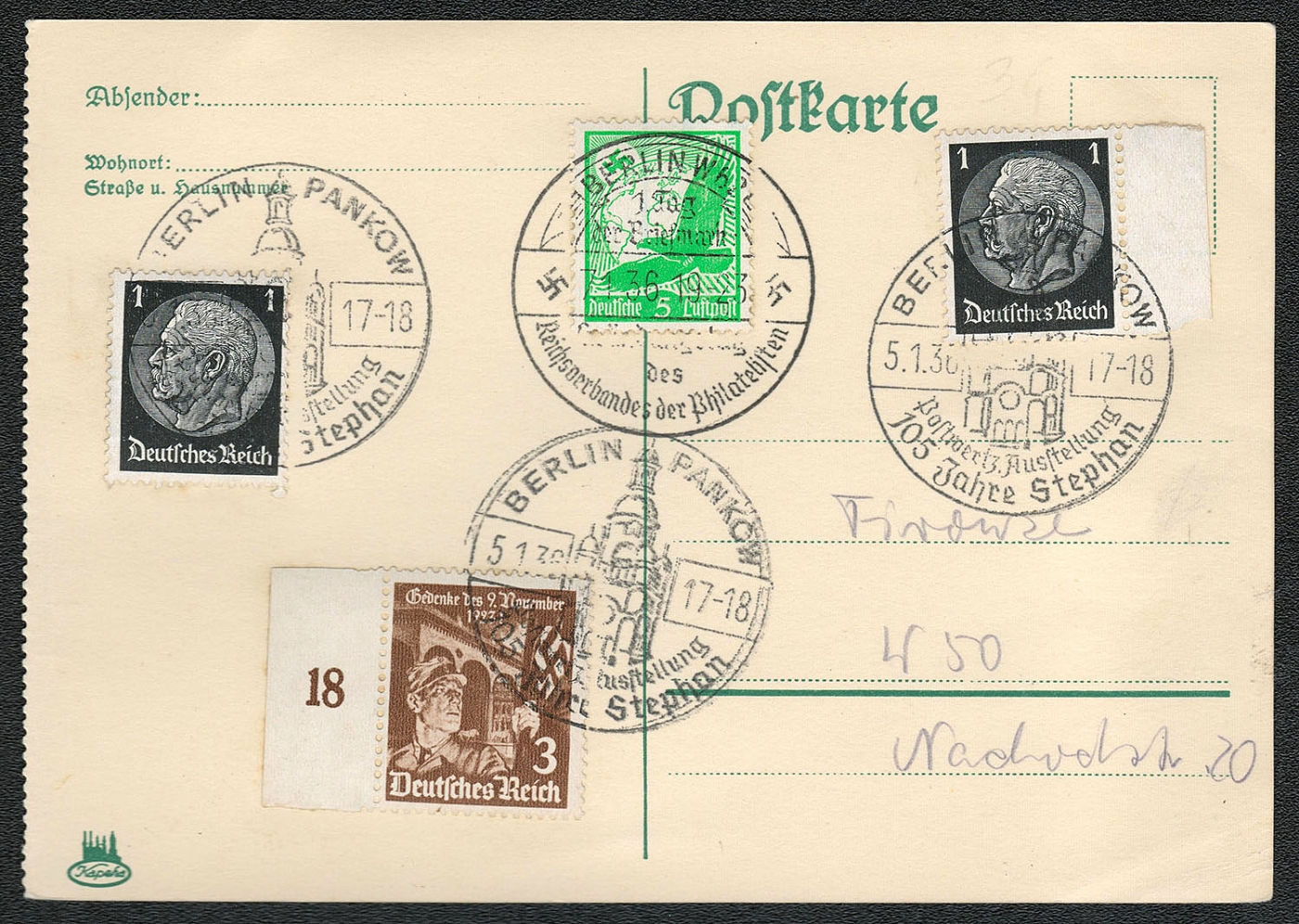
892
-
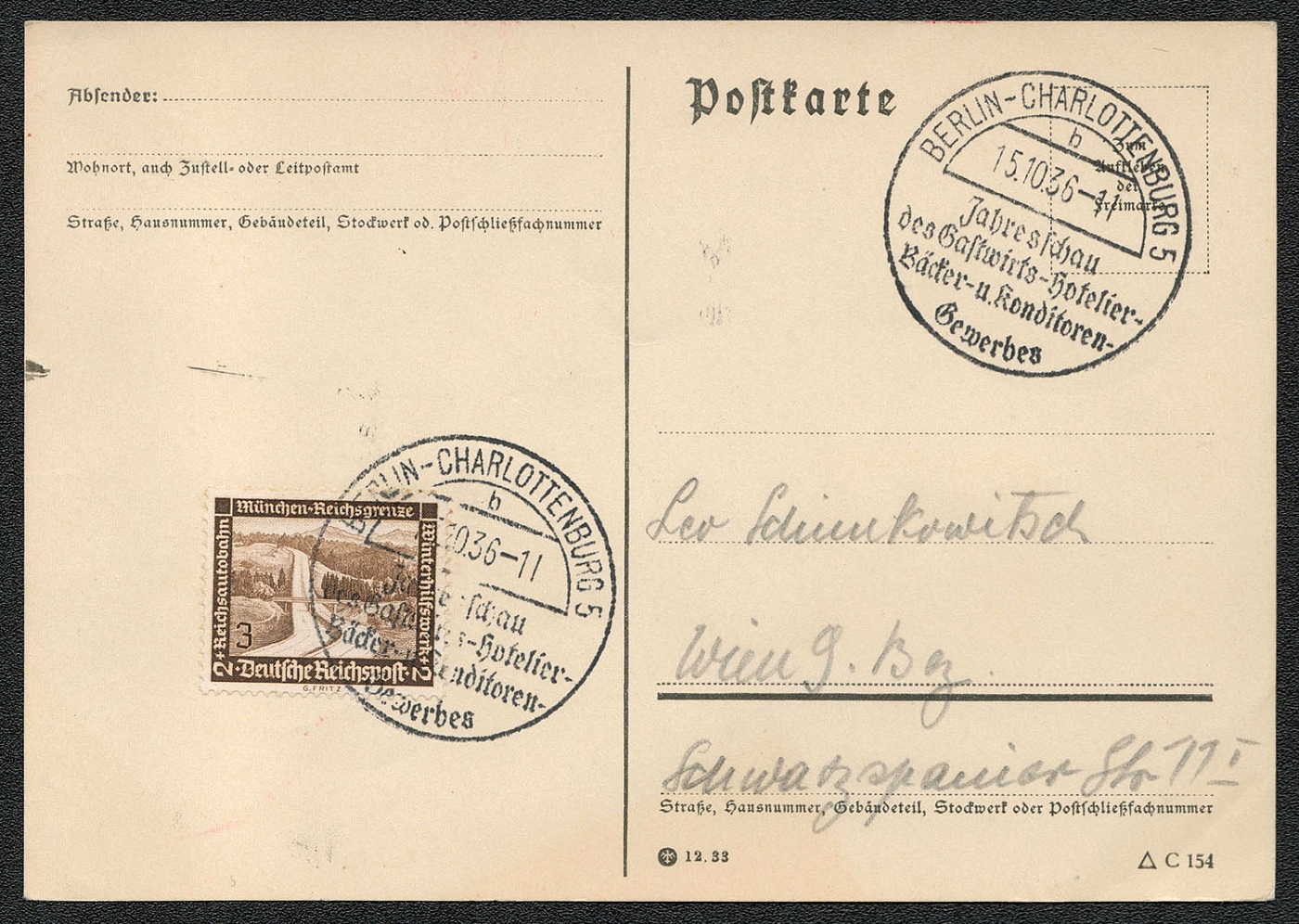
893
-
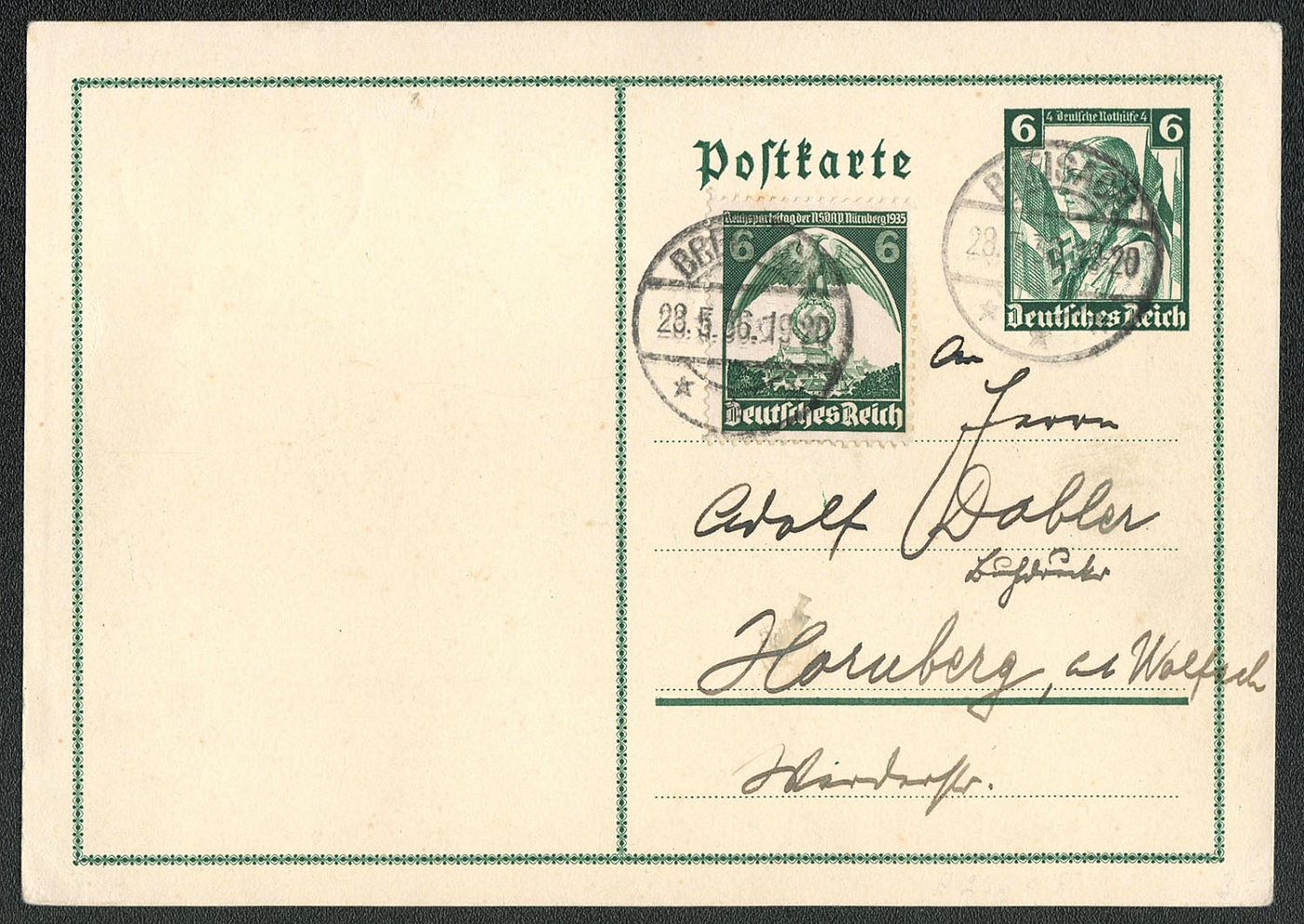
894
-
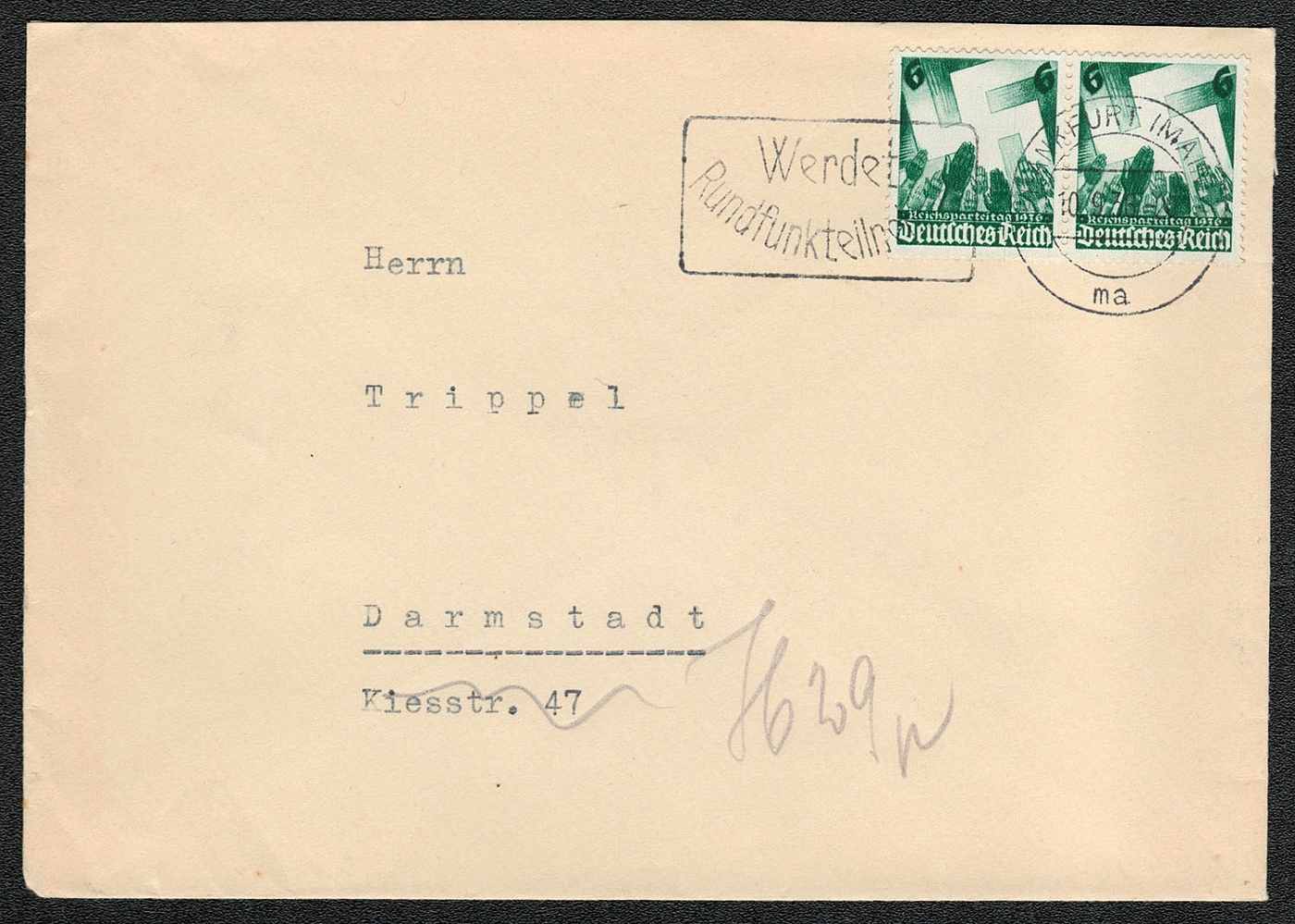
1936 Frankfurt Specail Postmark Become a radio subscriber
1936 Frankfurt Specail Postmark Become a radio subscriber
Unsold
895
-
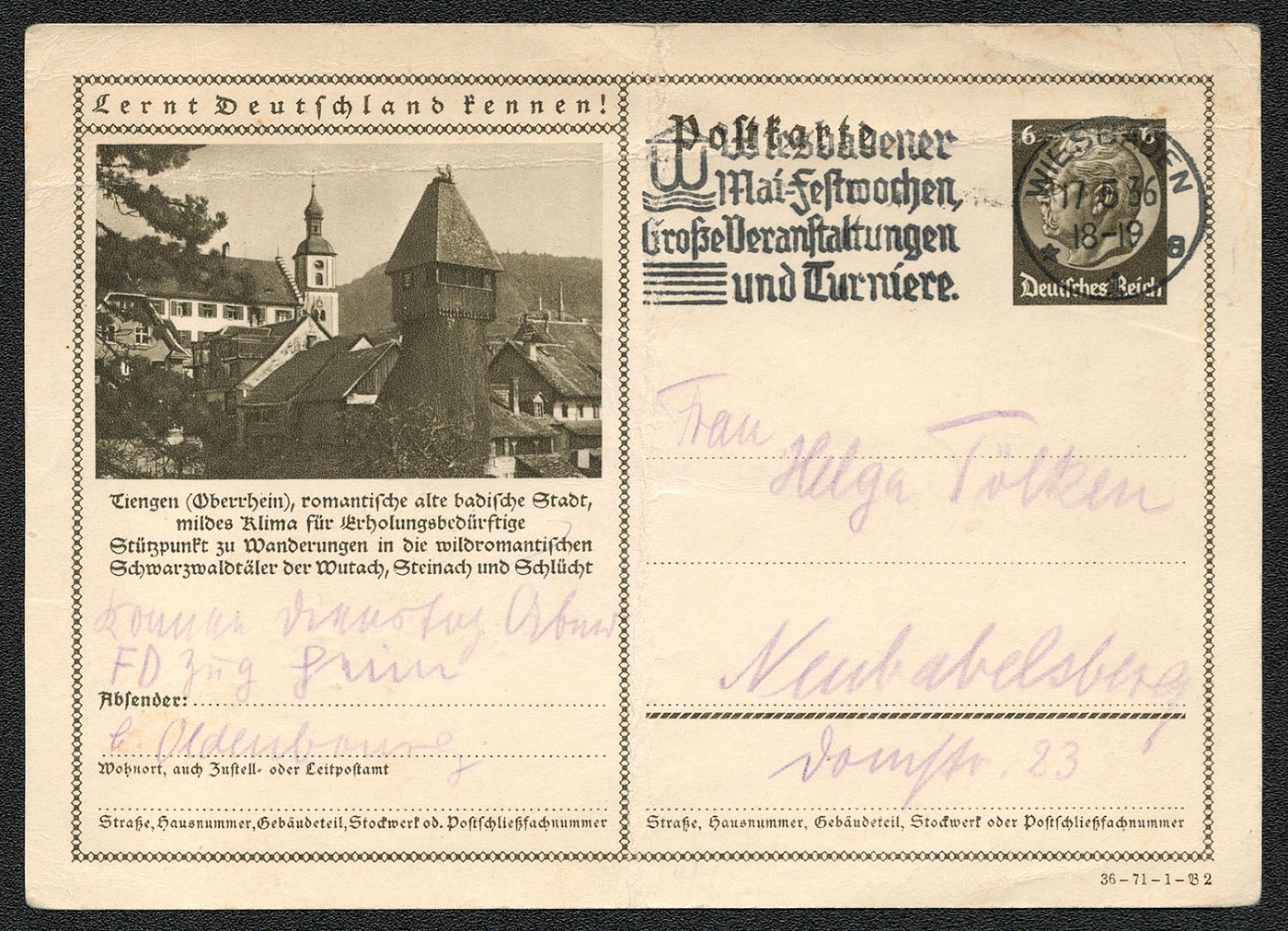
896
$5
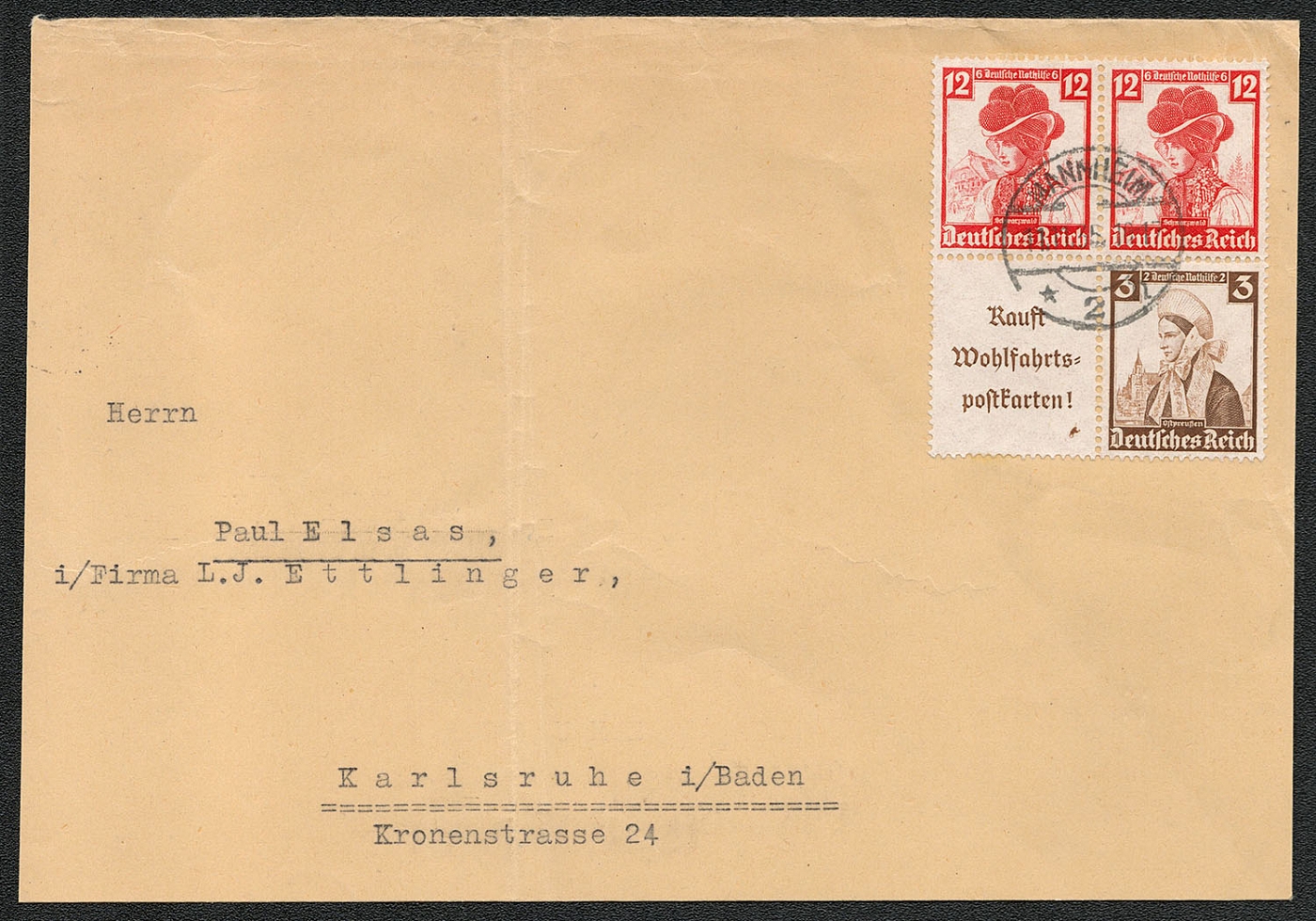
1936 Mannheim franked se-tenant from booklet
1936 Mannheim franked se-tenant from booklet
Sold for:
$5
897
$12
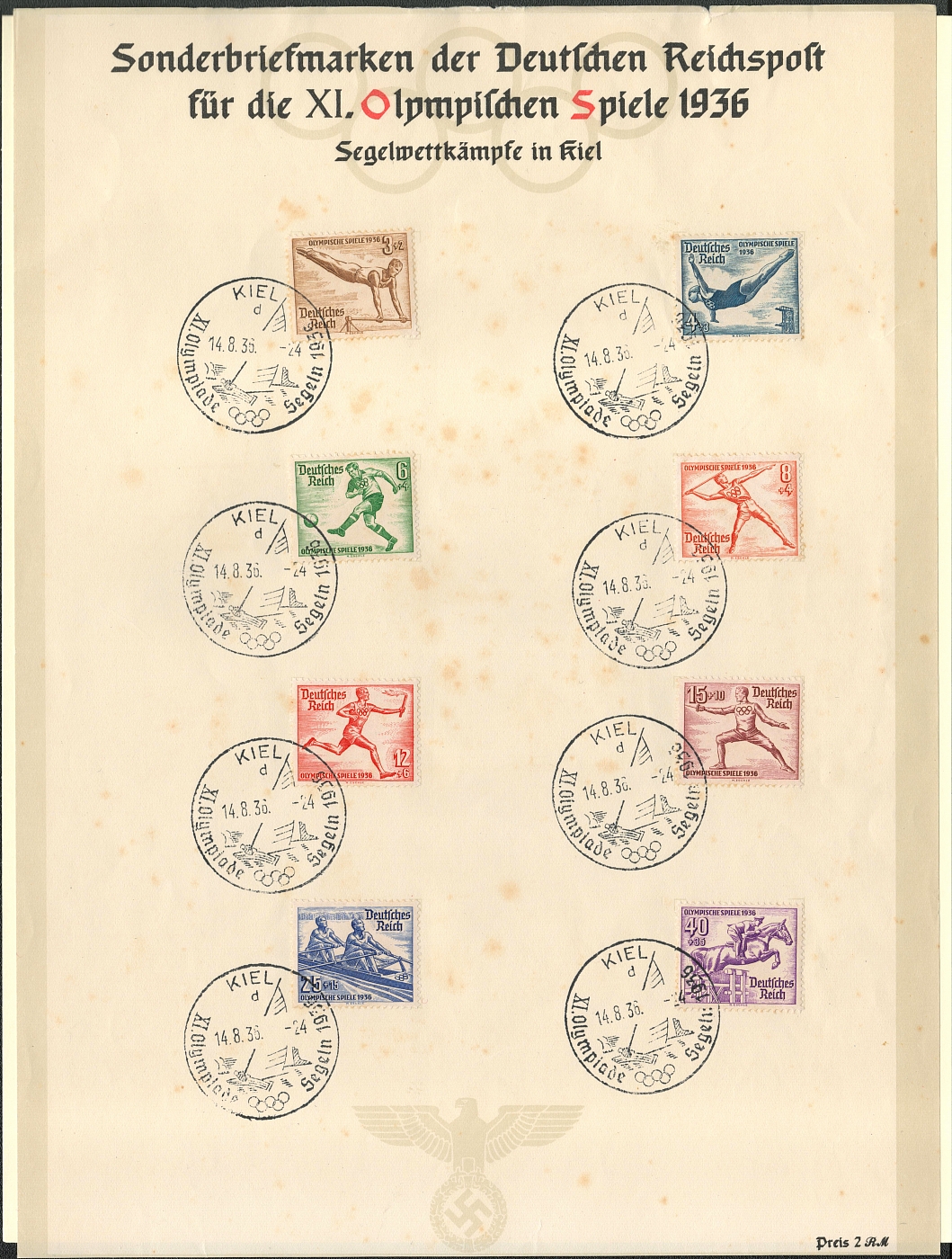
1936 Summer Olympic Games in Berlin Souvenir sheet
1936 Summer Olympic Games in Berlin Souvenir sheet
Sold for:
$12
898
-
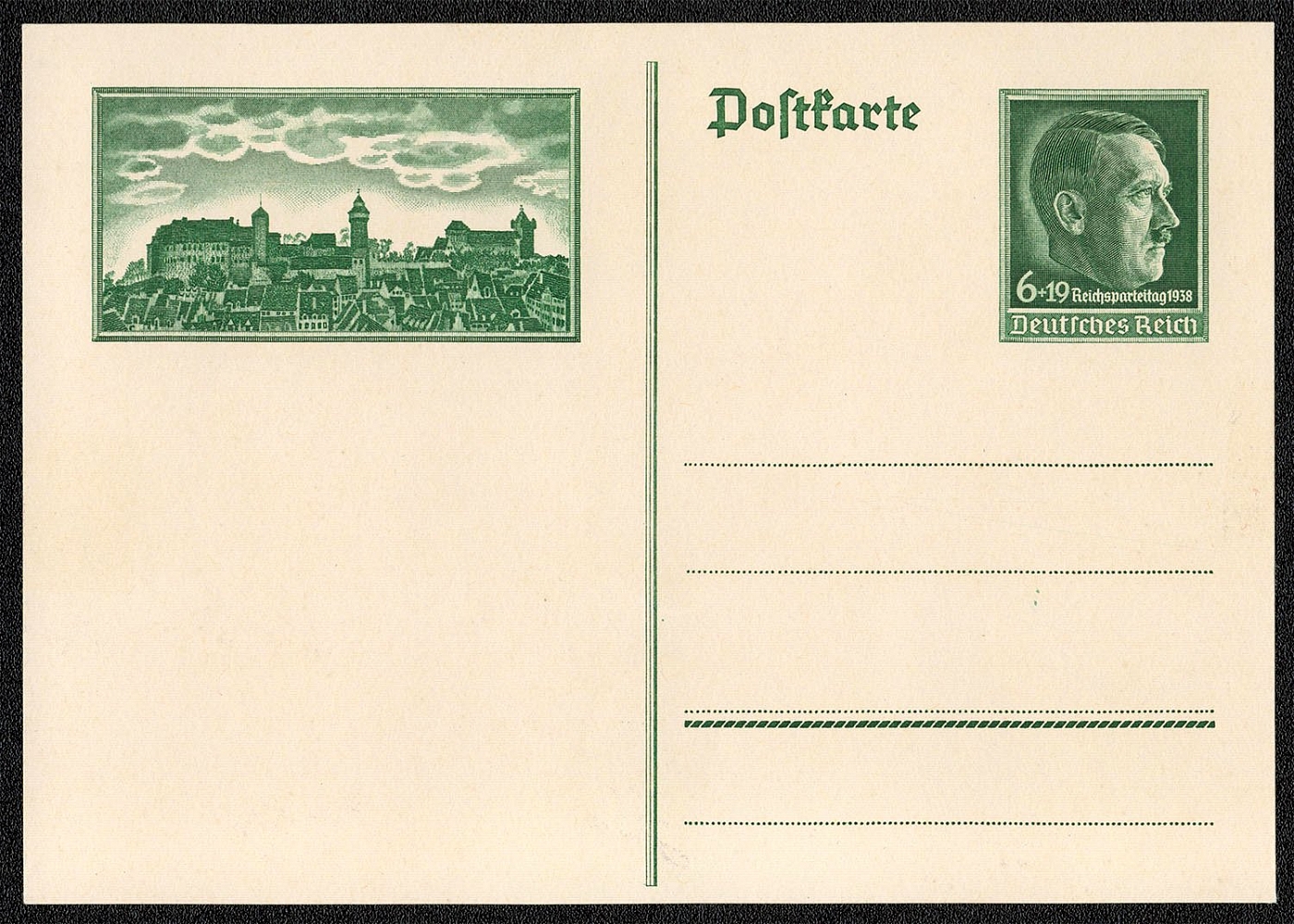
1938 The official postal card Michel P 272 panorama of Nuremberg
The official postal card (Michel P 272) issued by the Reichspost was designed by Professor Richard Klein of Munchen, and depicts a panorama of Nurnberg. It was issued at the same time as the adhesive stamp (1 September 1938) and was valid until 31 December 1939.
Unsold
899
-
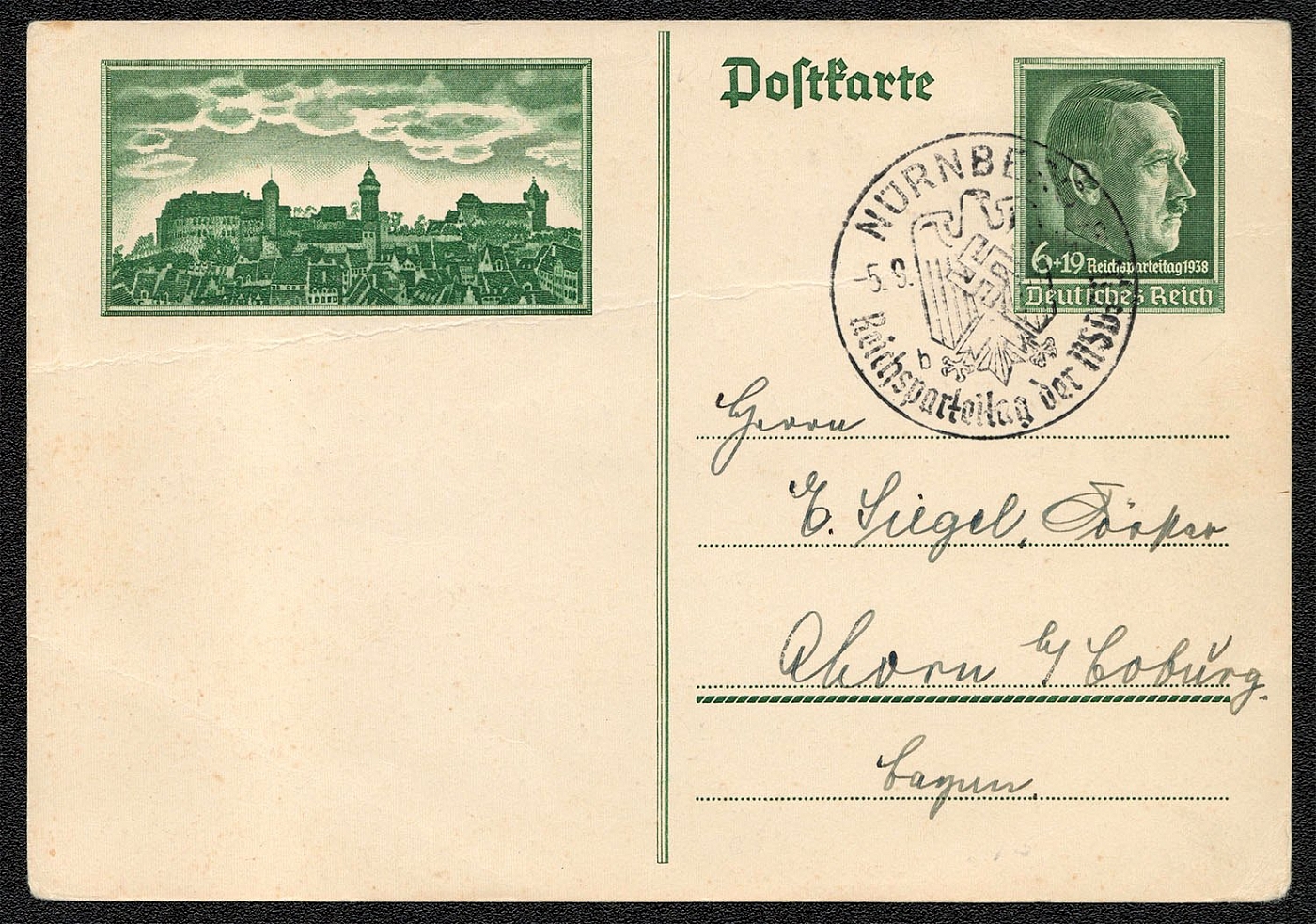
1938 Michel P 272 postally used on 5 September. Panorama of Nuremberg
Michel P 272 postally used on 5 September 1938. The handstamp was identical in design to that used in 1937, but with the reduction in the number of Camp Post Offices, only 22 individual handstamps seem to have been used. Once again the special handstamps bore no post office number, but used identifying letters. The post office using “b” is not known.
Unsold
900
-
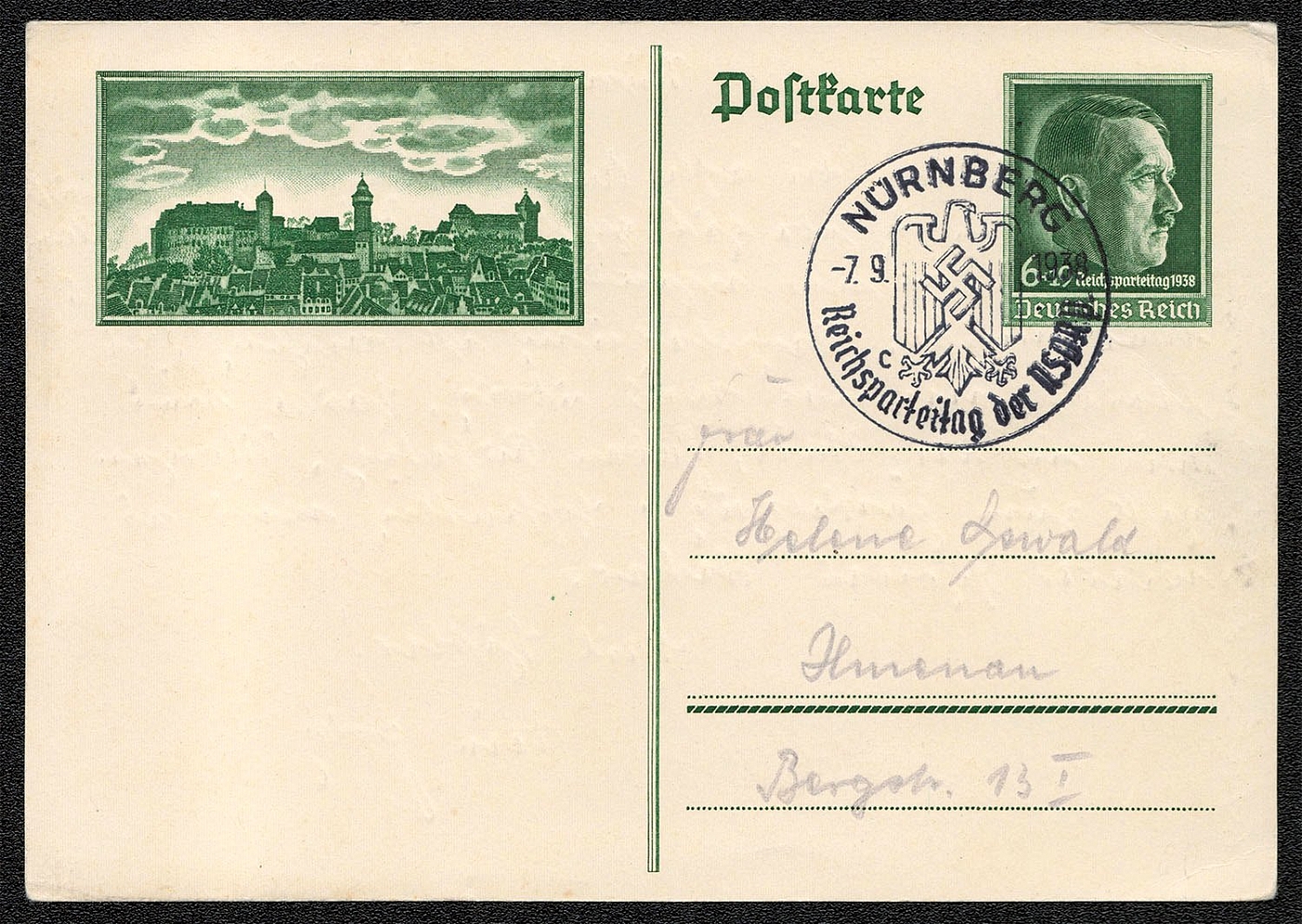
1938 Michel P 272 postally used on 7 September. Panorama of Nuremberg
Michel P 272 postally used on 7 September 1938. The handstamp was identical in design to that used in 1937, but with the reduction in the number of Camp Post Offices, only 22 individual handstamps seem to have been used. Once again the special handstamps bore no post office number, but used identifying letters. The post office using “c” is not known.
Unsold
901
-
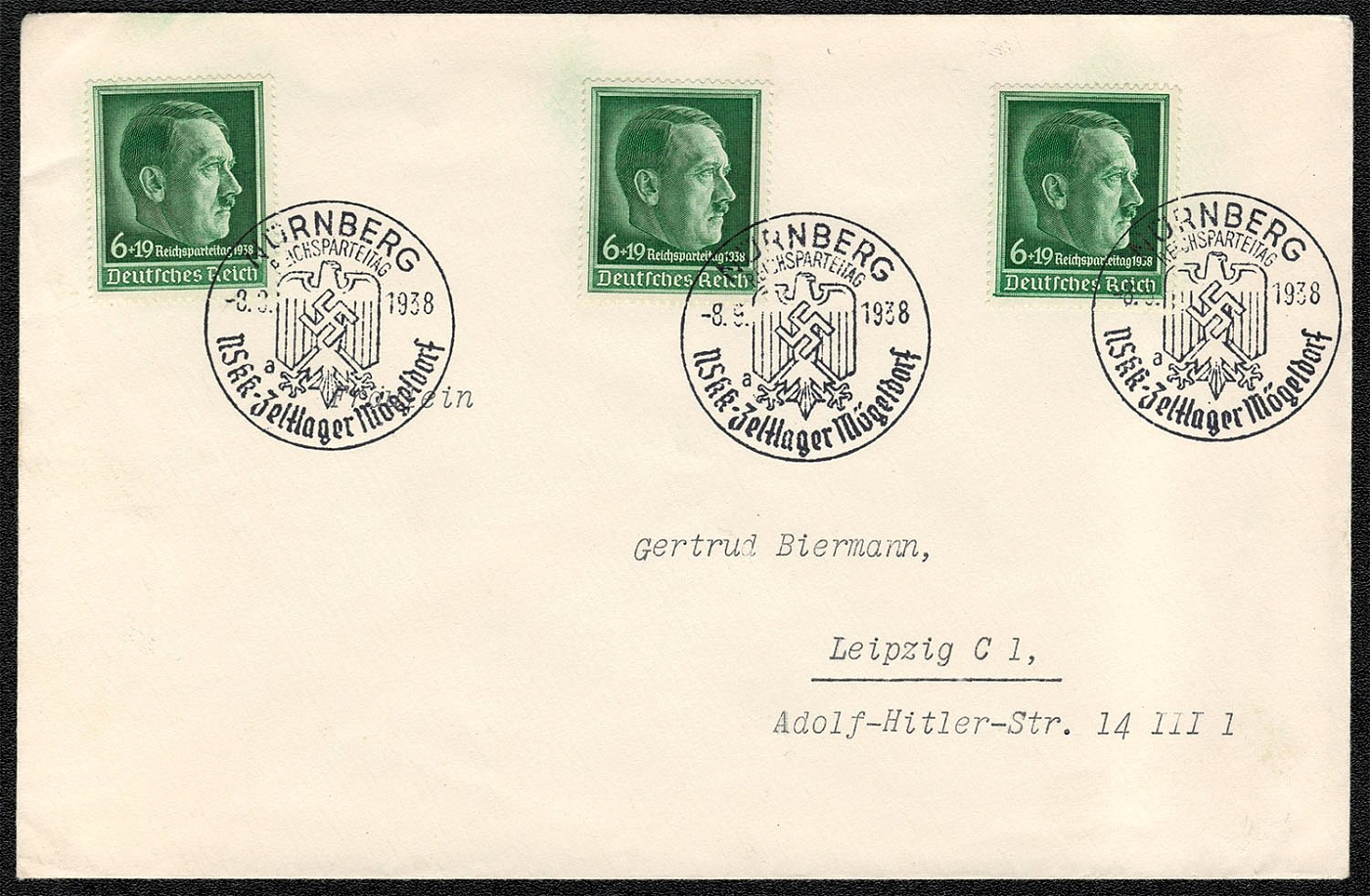
1938 Nuremberg cover franked with Scott B120 was posted 8 September
The special temporary post office set up in the Schaferwiese in Mogeldorf to serve the 12,000 men of the NSKK was, once again, issued its own distinctive version of the Reichsparteitag handstamp. The above cover (franked with Scott B120) was posted 8 September 1938. The design of the sonderhandstempel (commemorative handstamp) is identical to that used at this office in 1937, but only two varieties were used in 1938. This example is Type II, in which the letter “a” is low, near the second “K” of “NSKK.” Mail from this office was forwarded through Postamt Nurnberg 2.
Unsold
902
-
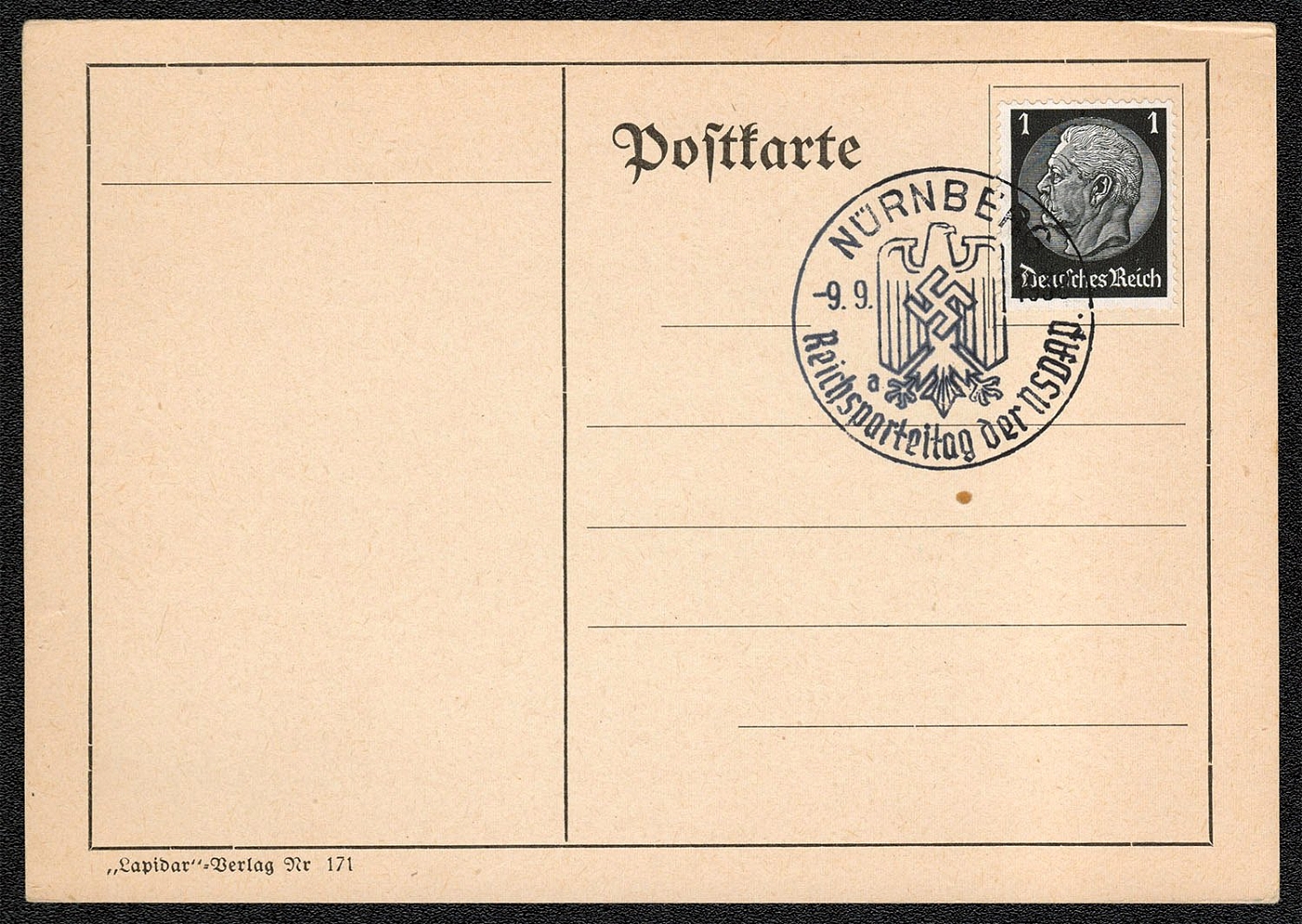
1938 Nuremberg postcard dated 9 September and franked with Sc 415
This privately printed post card dated 9 September 1938 and franked with Sc 415, received the Bossek-designed commemorative handstamp cancellation, Type I (a), in which the tail of the eagle is between the and “a” of “tag.” The identifying letter “a” indicates the card received the Gefalligkeitsstempel (favor cancellation) in Postamt Nurnberg 2.
Unsold
903
-

1938 Nuremberg The official postcard Michel P 272
The official postal card (Michel P 272) issued by the Reichspost postally used on 9 September 1938. The letter “k” in the handstamp alone would identify Nurnberg 2 as the post office of origin if the card did not also carry the Nurnberg 2 machine circular date stamp.
Unsold
904
-
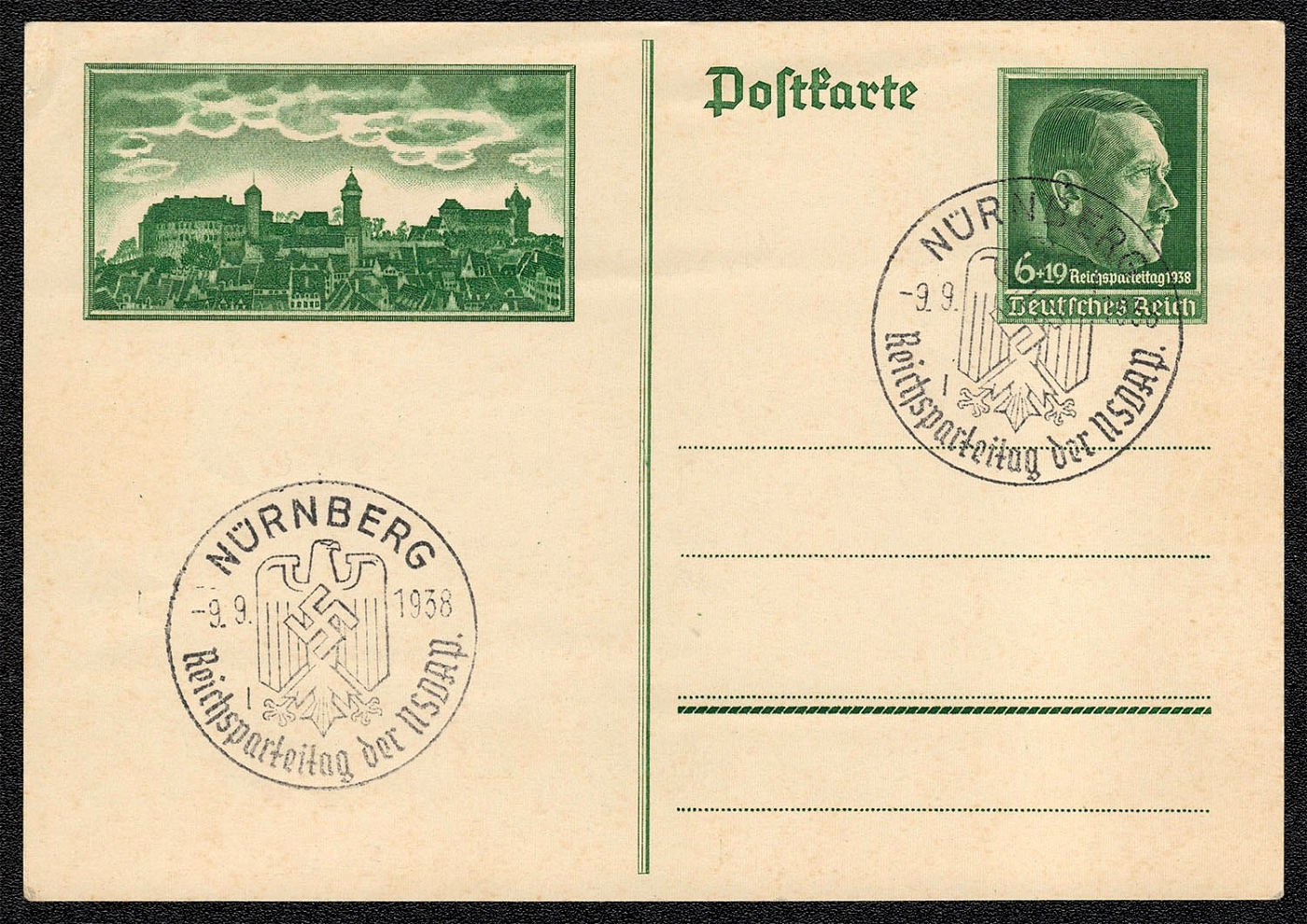
1938 Nuremberg The official postcard Michel P 272
The official postal card (Michel P 272) issued by the Reichspost with a “favor cancellation” dated 9 September 1938. The post office using the letter “1” in the handstamp has yet to be identified.
Unsold
905
-
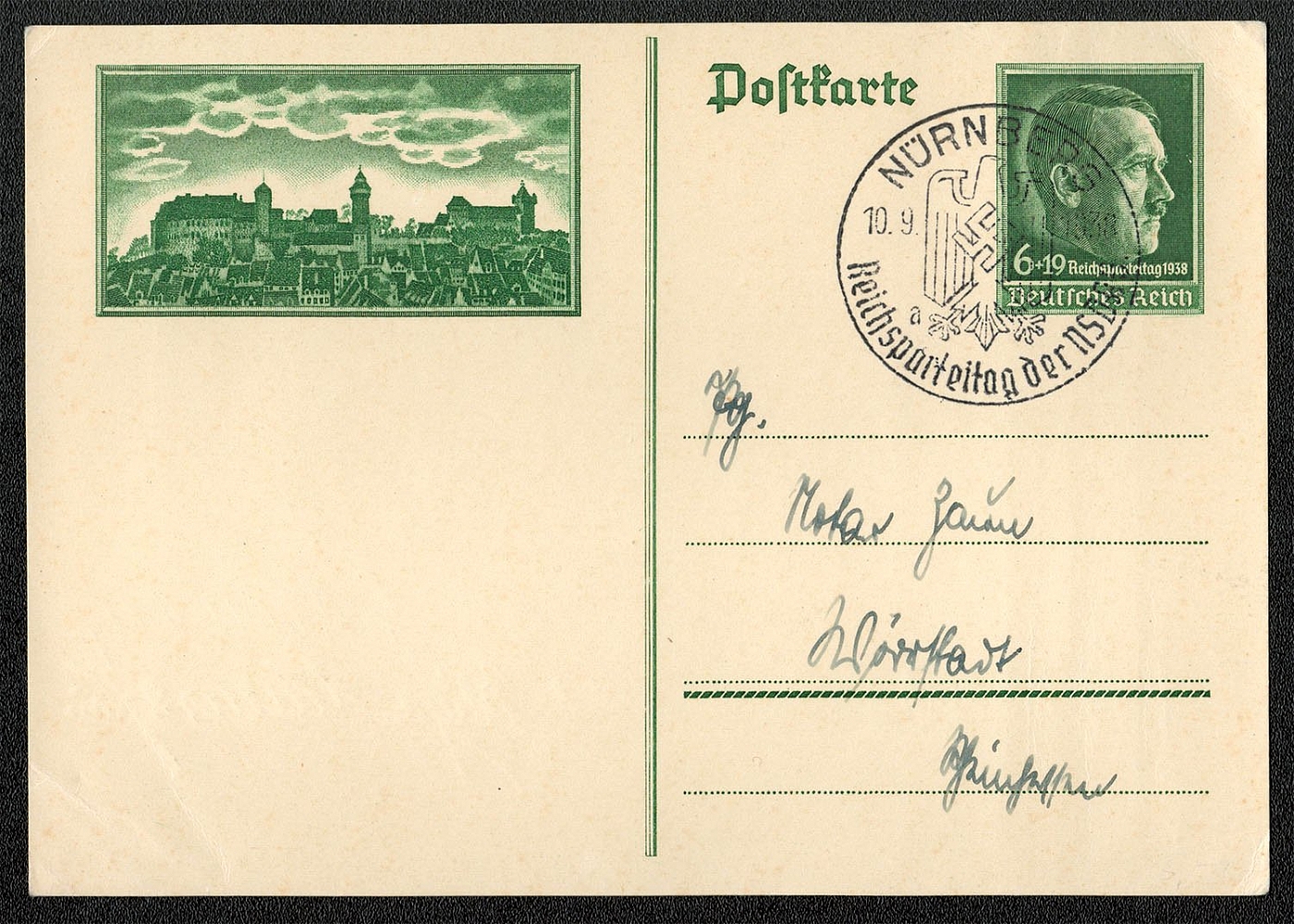
1938 Nuremberg Michel P 272 postally used on 10 September
"Michel P 272 postally used on 10 September 1938. The Bossek-designed commemorative handstamp is Type I (a) in which the tail of the eagle points between the and “a” of ""tag” and the left side of the eagle’s body is drawn with a straight line. The identifying letter “a” in the cancel has a narrow loop which indicates Nurnberg 2 was the postamt of origin. On the message side, the correspondents tells the addressee they are sending the card because they know he is a stamp collector. The card is signed by five visitors to the Rally with the standard “Heil Hitler” close."
Unsold
906
-
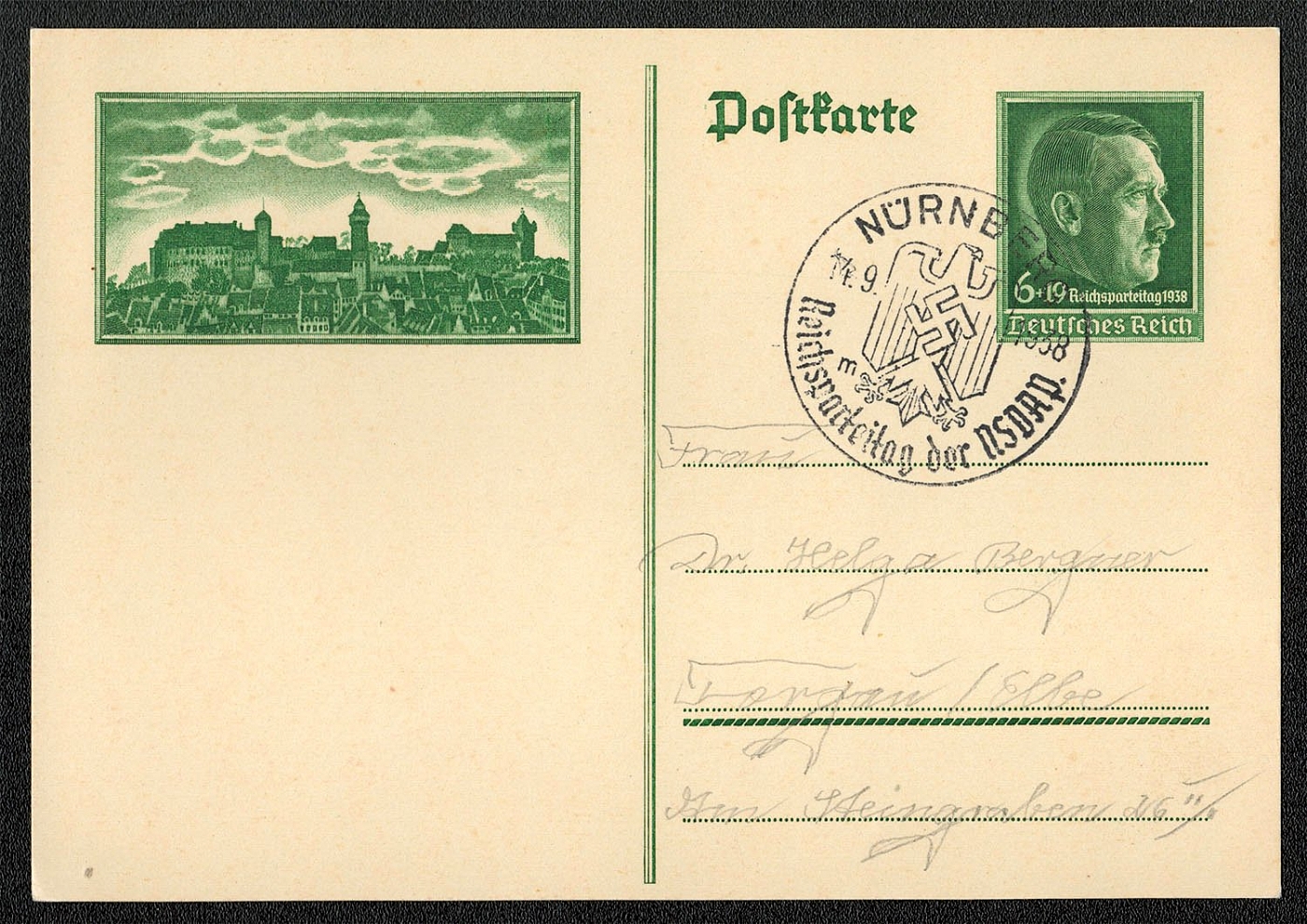
1938 Nuremberg Michel P 272 postally used on 14 September
Michel P 272 postally used on 14 September 1938. The Bossek-designed commemorative handstamp contains the identifying letter “m” in the cancel which indicates Nurnberg 2 was the postamt of origin.
Unsold
907
-
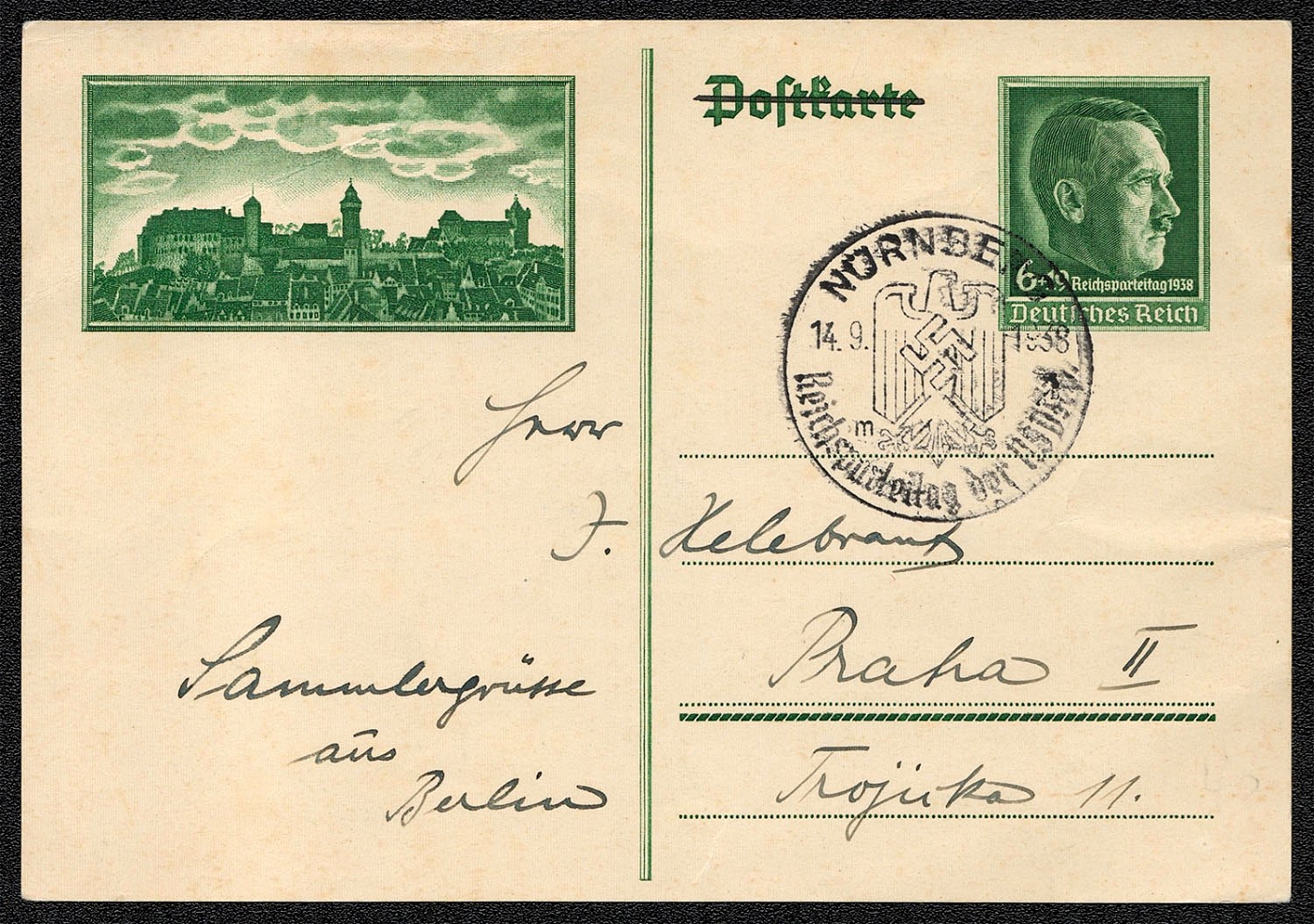
1938 Nuremberg Michel P 272 postally used on 14 September
Michel P 272 postally used on 14 September 1938. The Bossek-designed commemorative handstamp contains the identifying letter “m” in the cancel which indicates Nurnberg 2 was the postamt of origin.
Unsold
908
-
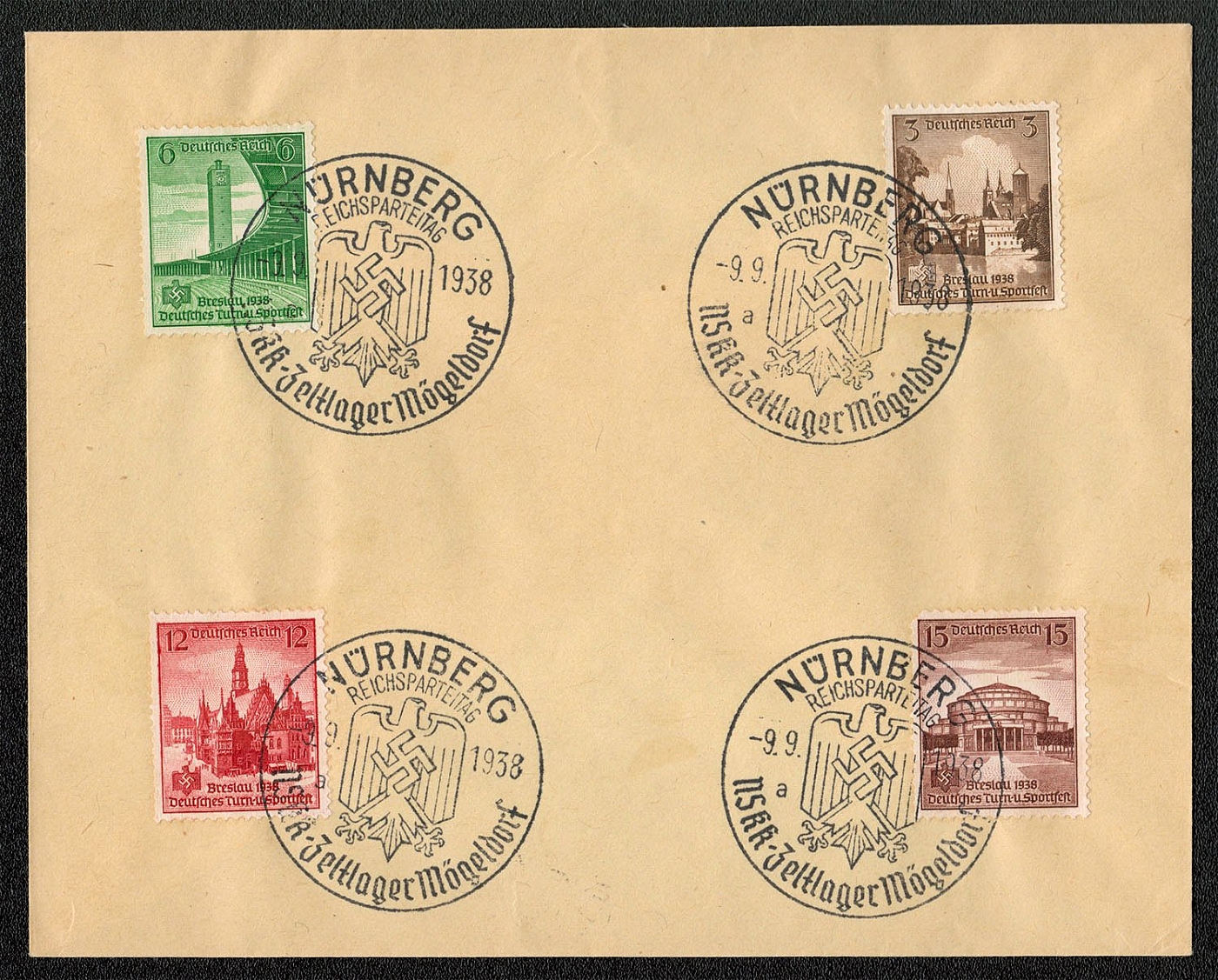
1938 Nuremberg souvenir sheet dated 9 September is franked with Sc 486-89
This impromptu souvenir sheet dated 9 September 1938 is franked with Sc 486-89, the Turn - und Sportfest Breslau issue. The sonderhandstempel, applied as a favor for souvenir purposes (Gefdlligkeitsstempelungen), is Type I in which the letter “a” is high, near the “N” of “NSKK.” Mail from this office was also forwarded through Postamt Nurnberg 2.
Unsold
909
-
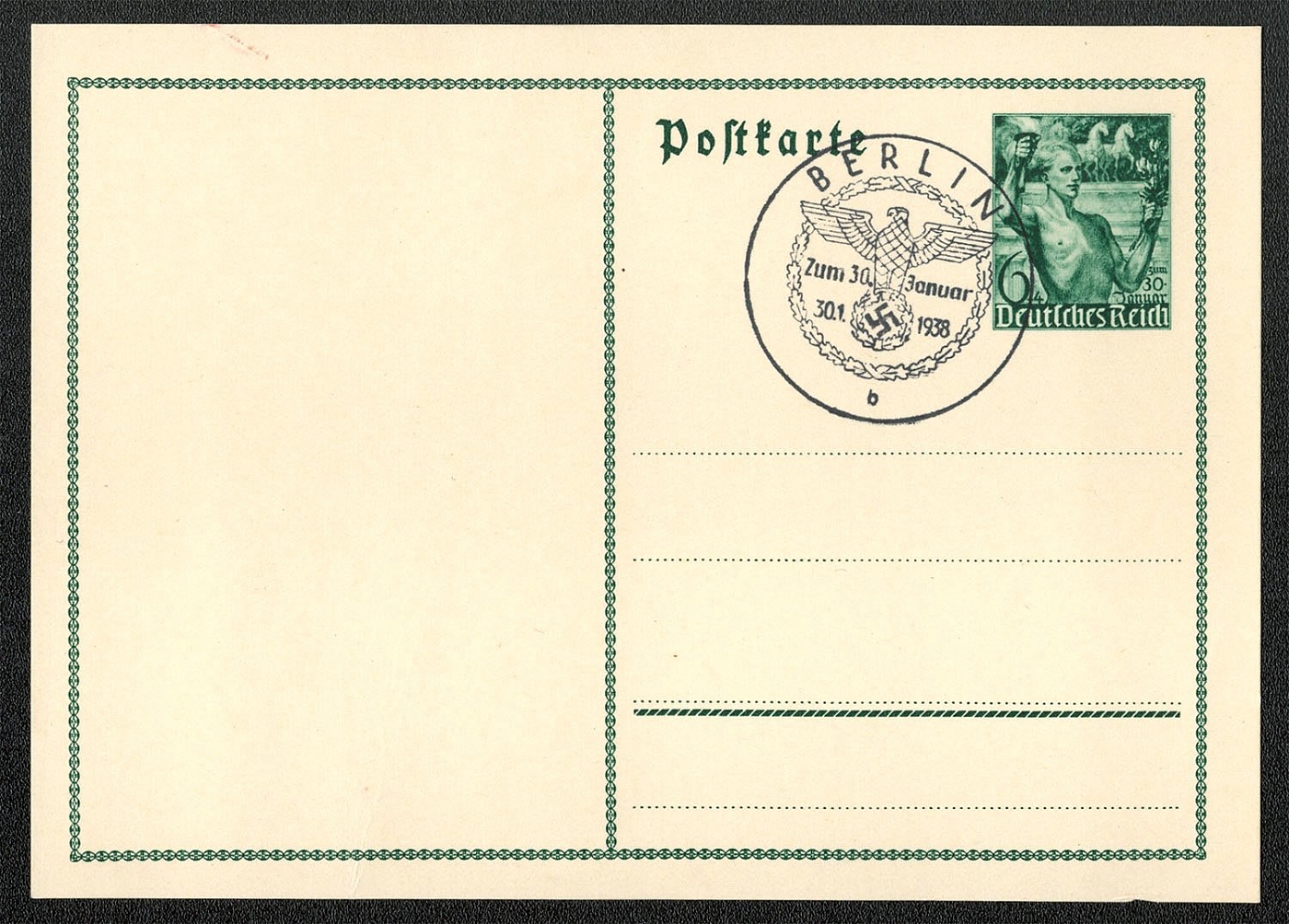
1938 Berlin postcard Michel P267
The postal card (Michel P267) was designed by Professor Kolb and issued 28 January 1938. The special postmark was designed by Erich Stahl of Berlin and only used on 30 January 1938.
Unsold
910
-
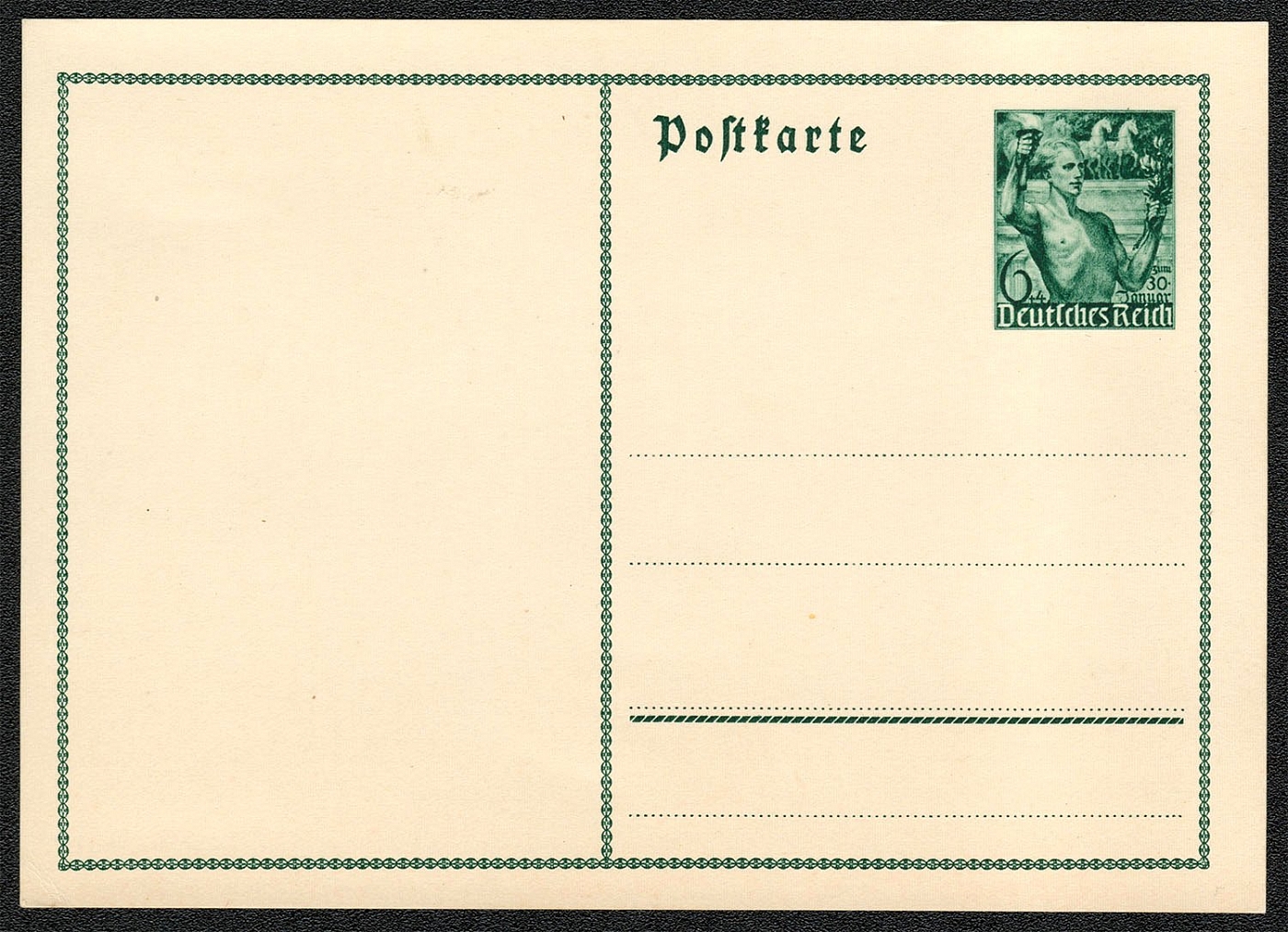
1938 postcard Michel P267
The postal card (Michel P267) was designed by Professor Kolb and issued 28 January 1938.
Unsold
911
-
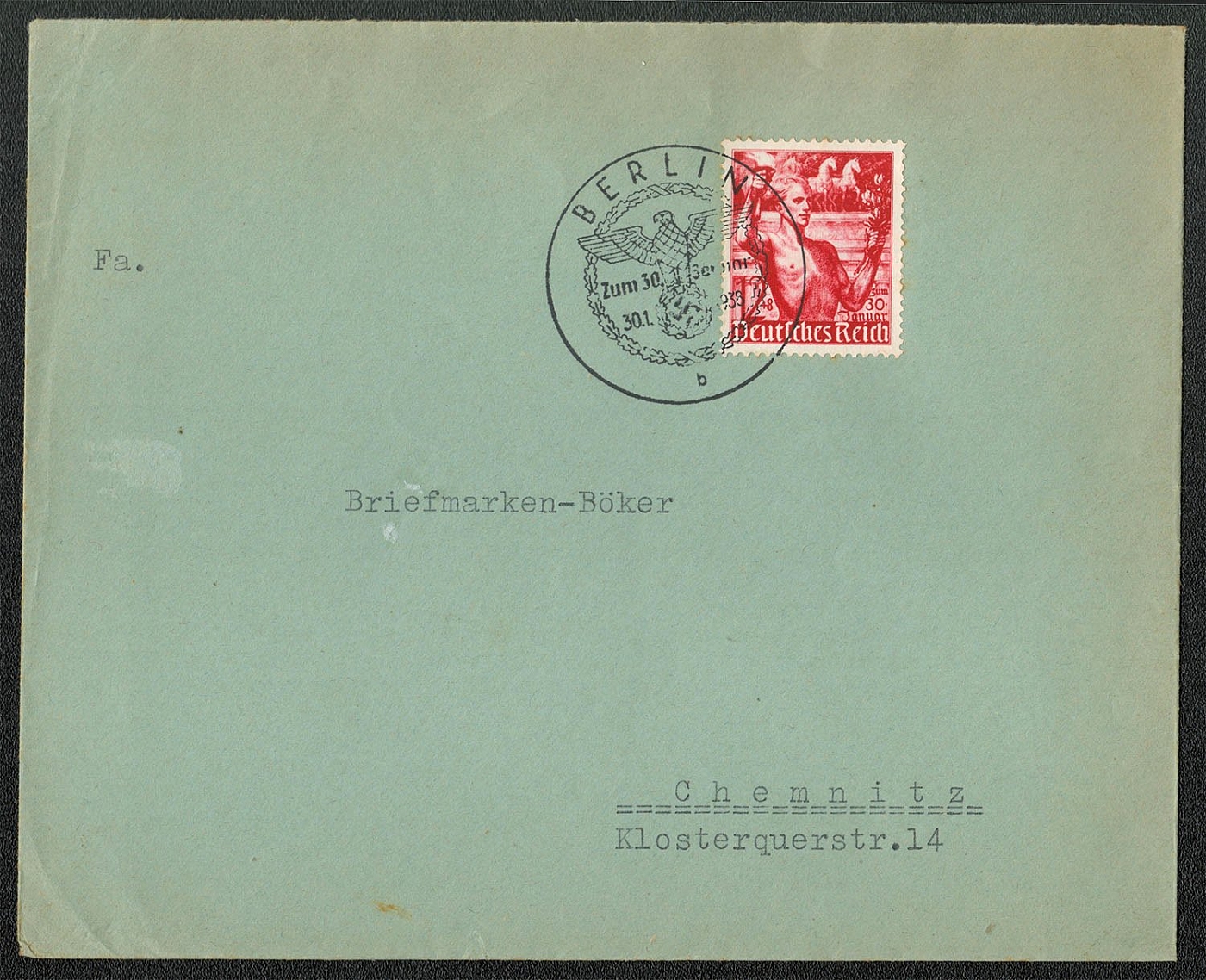
1938 Postally used cover franked with Scott No. Bl 17 postmarked 30 January 1938 in Berlin.
1938 Postally used cover franked with Scott No. Bl 17 postmarked 30 January 1938 in Berlin.
Unsold
912
$5
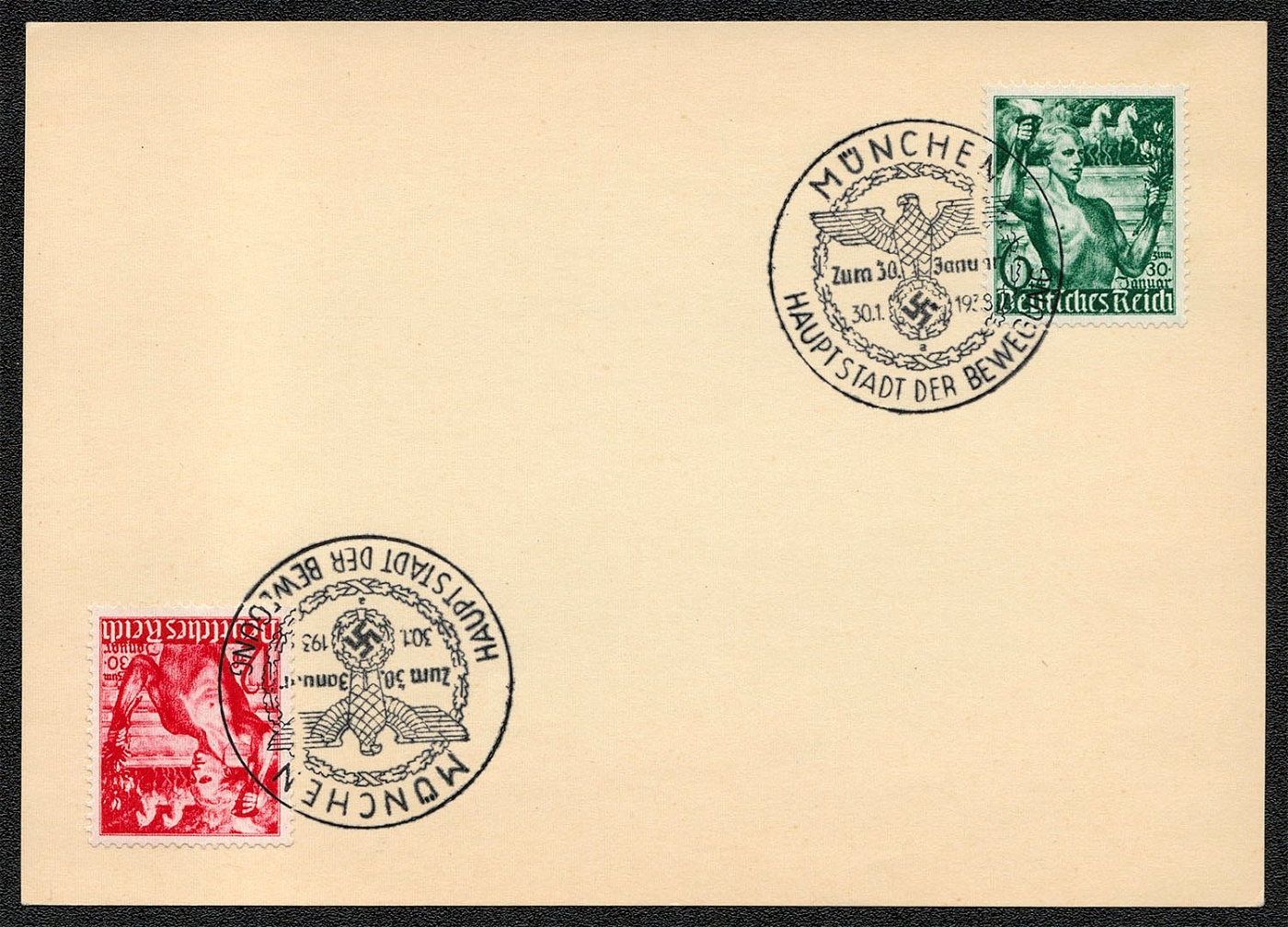
1938 Unofficial souvenir card franked with Scott Nos. B117 and B118, postmarked 30 January in Munich
Unofficial souvenir card franked with Scott Nos. B117 and B118, postmarked 30 January 1938 in Munchen.
Sold for:
$5
913
-
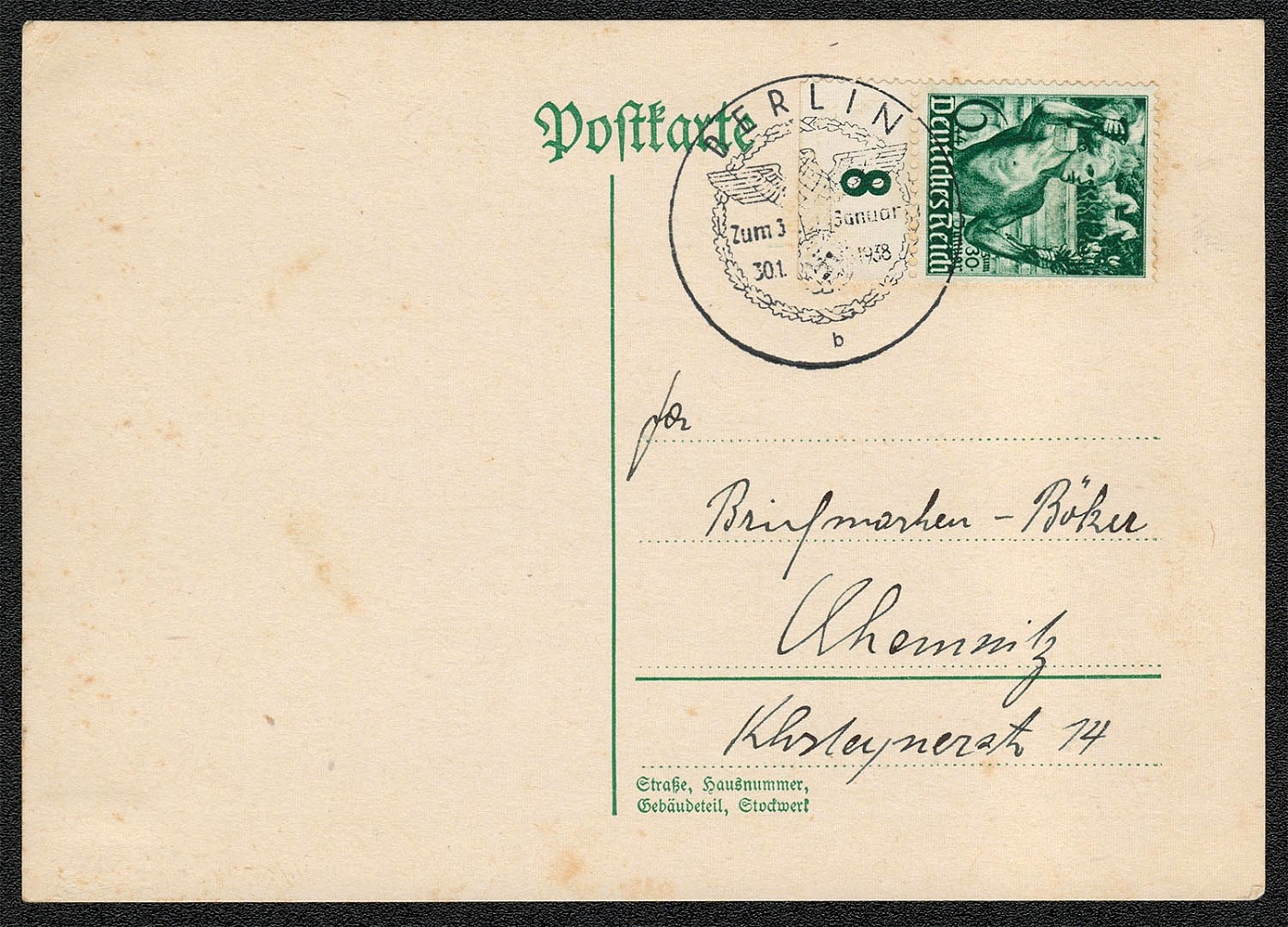
1938 Postally used card franked with Scott No. B116 with tab, postmarked 30 January in Berlin
Postally used card franked with Scott No. B116 with tab, postmarked 30 January in Berlin
Unsold
914
$5

1938 Michel P 267 additionally franked with Scott B117-118. Posted in Essen to the United States
Michel P 267 additionally franked with Scott B117-118. Posted in Essen to the United States.
Sold for:
$5
915
$5
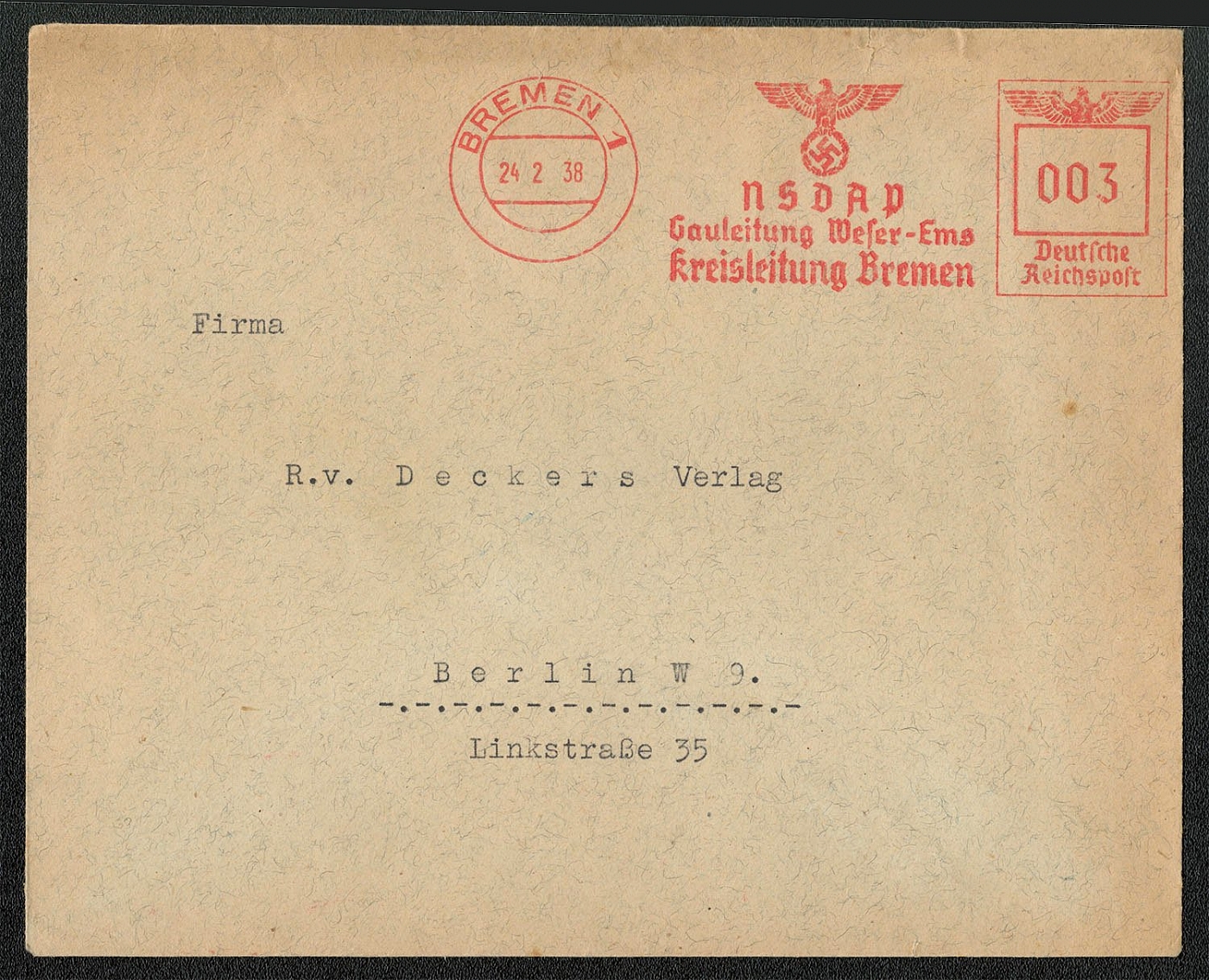
1938 Official NSDAP cover franked with a 3 Rpf postage meter stamp
Official NSDAP cover franked with a 3 Rpf postage meter stamp. Mailed on 24 February 1938 from the Claulcitiing 28cdcr-(Smd SlrcisslcifBremen (Weser-Ems Province Administrative Offices Bremen Subdivision Administration). Bremen lies in a sandy plain on both banks of the River Weser, about 46 miles from its influx into the North Sea. The nearby River Ems also flows into the North Sea.
Sold for:
$5
916
-
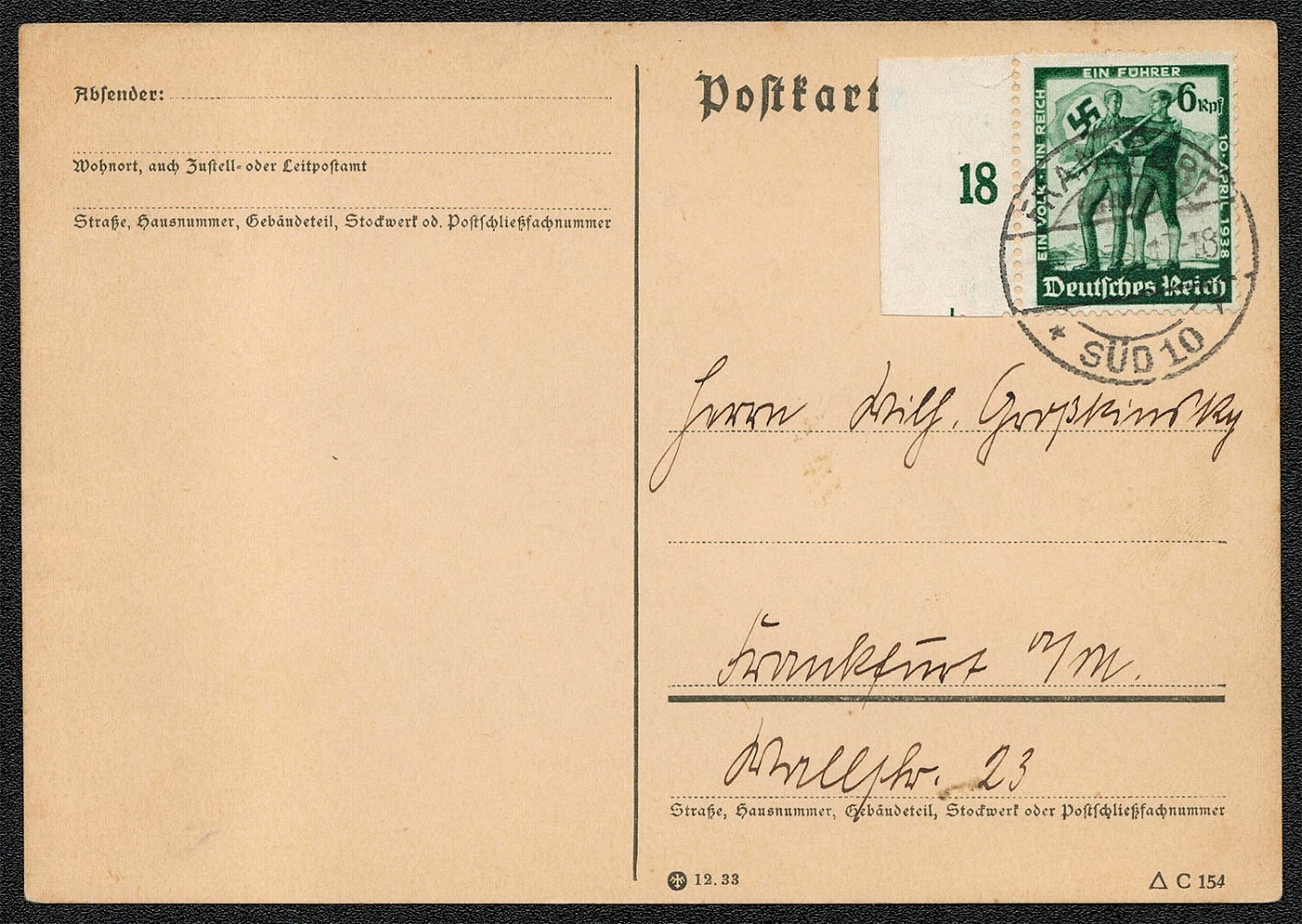
1938 Referendum in Austria Postcard franked with Scott 484 mailed on the first day of issue
Post card franked with Scott 484 mailed on the first day of issue: 8 April 1938 Frankfurt (Main)
Unsold
917
-
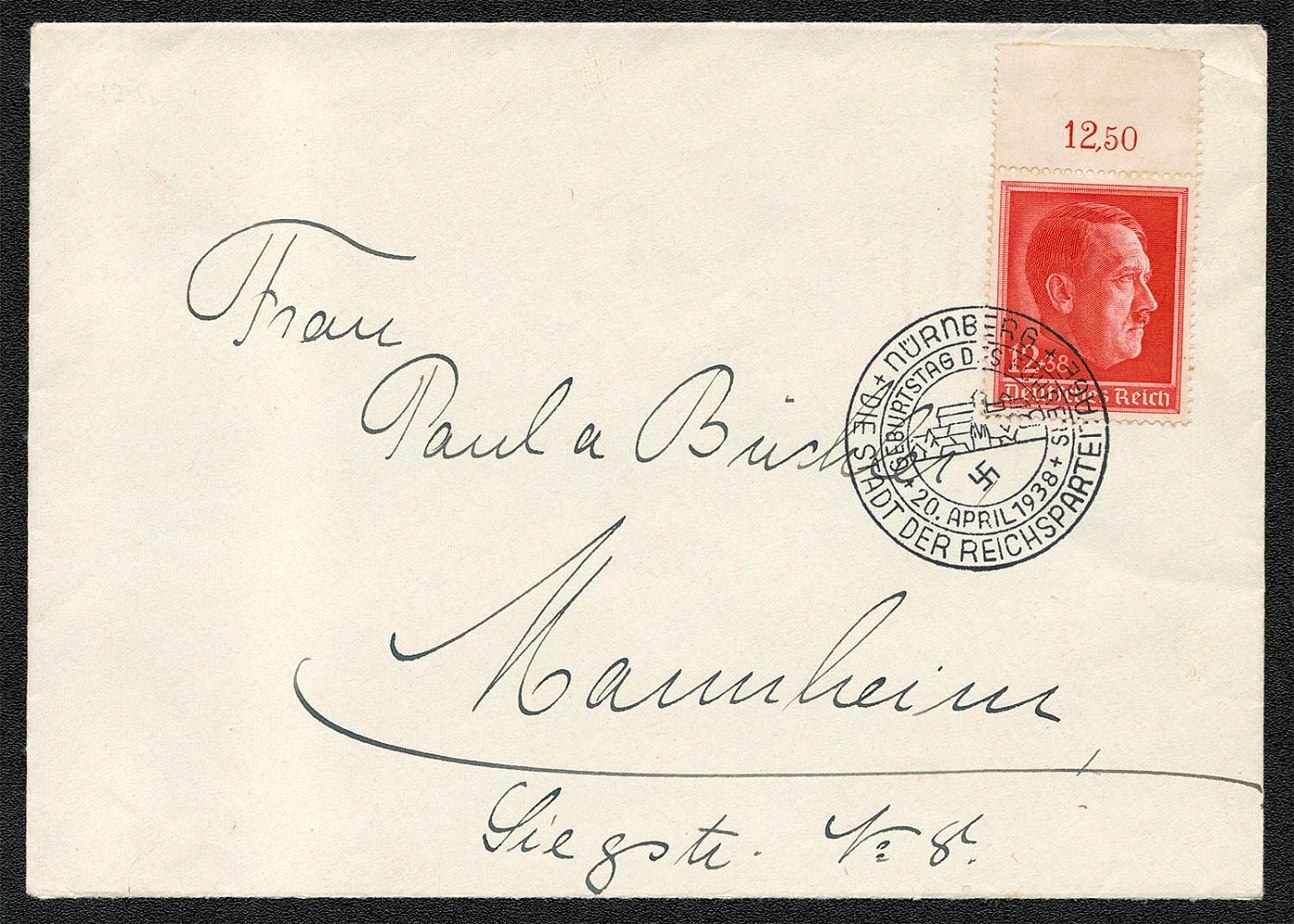
1938 Postally used cover franked with Sc B120, the stamp issued for Hitler’s forty-ninth birthda
Postally used cover franked with Sc B120, the stamp issued for Hitler’s forty-ninth birthday. The Nurnberg postmark depicts the castle and was only used on 20 April 1938.
Unsold
918
-
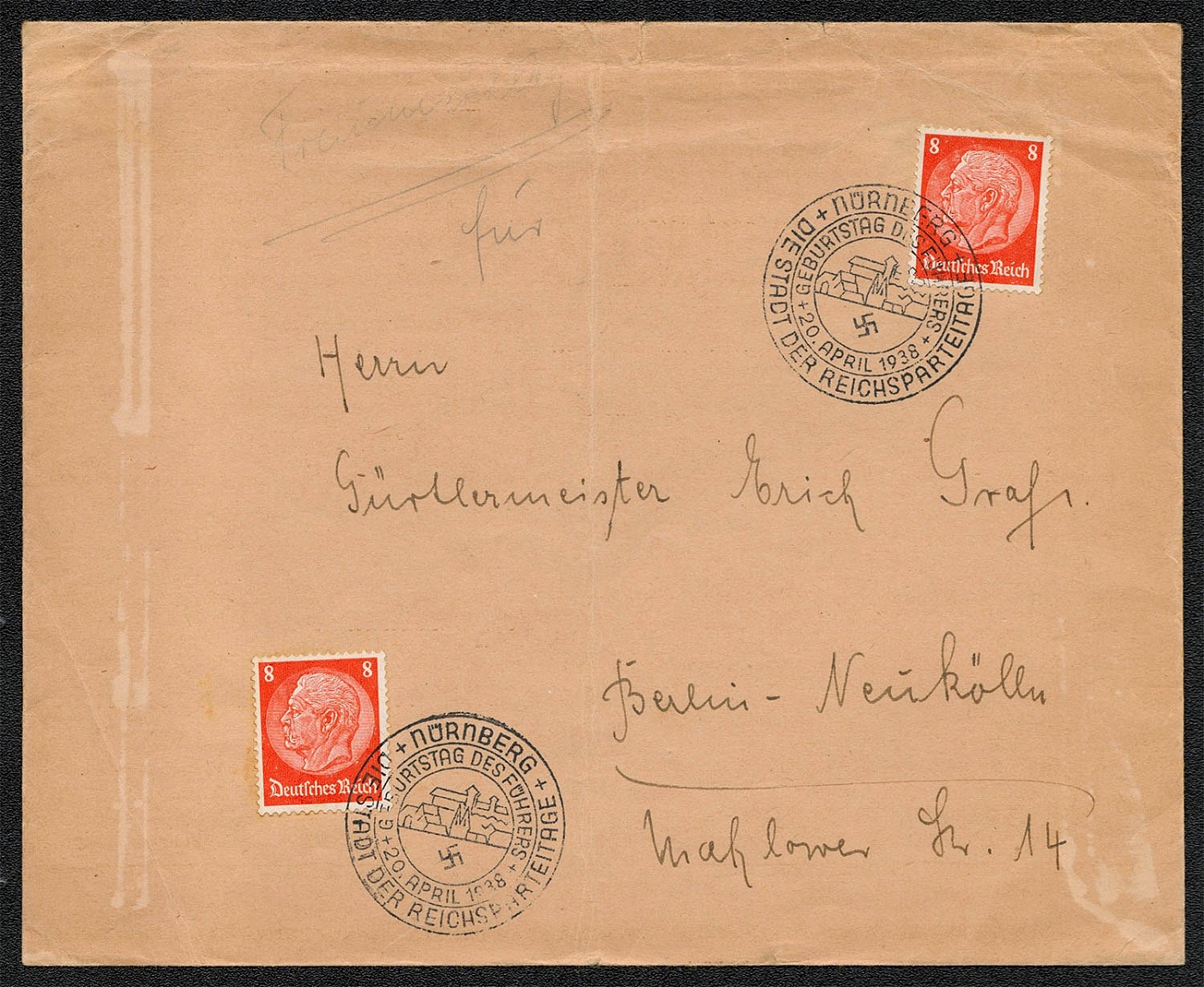
1938 Postally used cover franked with Scott No. 420 cancelled 20 April
Postally used cover franked with Scott No. 420 cancelled 20 April 1938 in Nurnberg.
Unsold
919
-
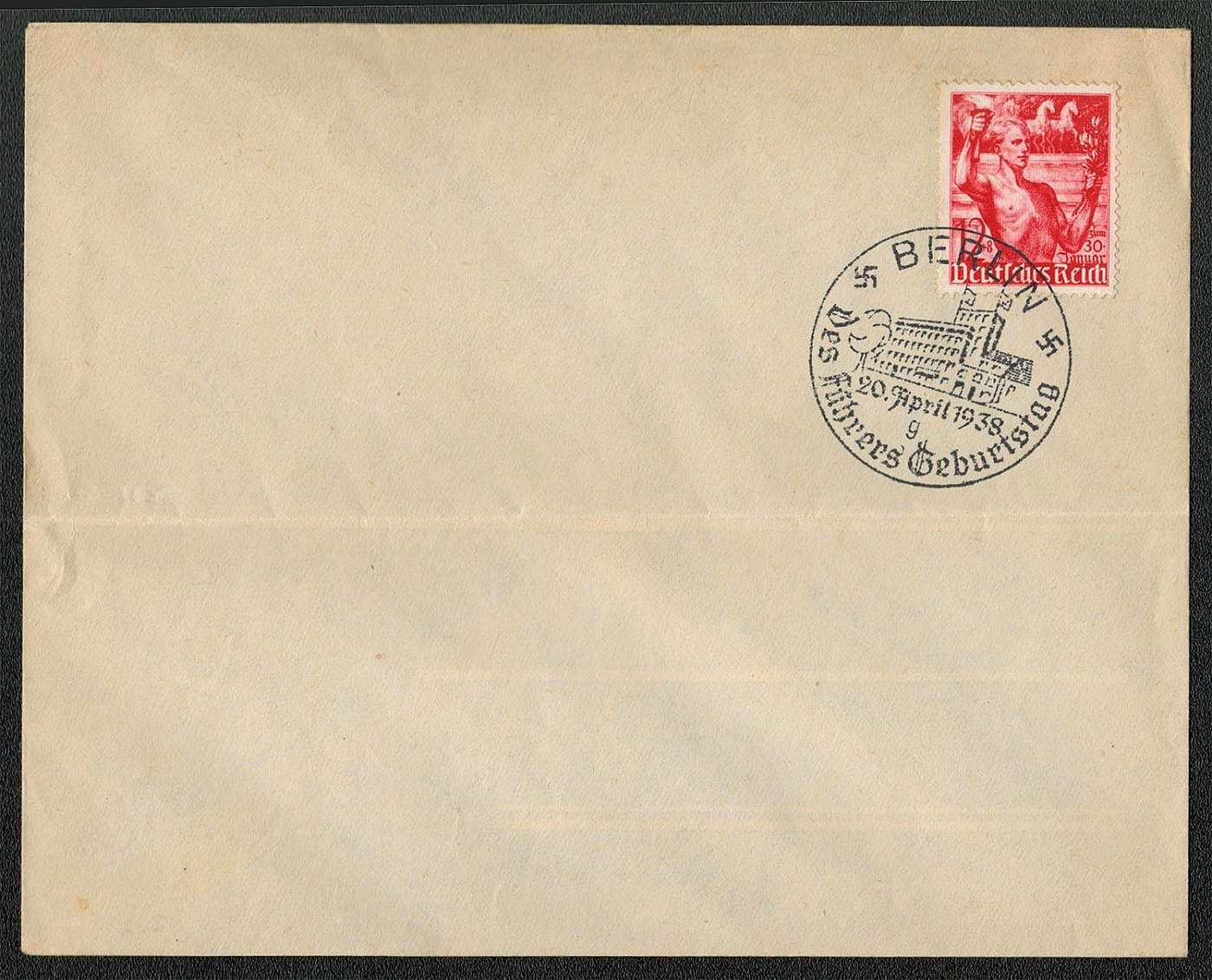
1938 Courtesy cancelled cover franked with Scott No. B117 postmarked 20 April in Berlin.
Courtesy cancelled cover franked with Scott No. B117 postmarked 20 April 1938 in Berlin.
Unsold
920
$5
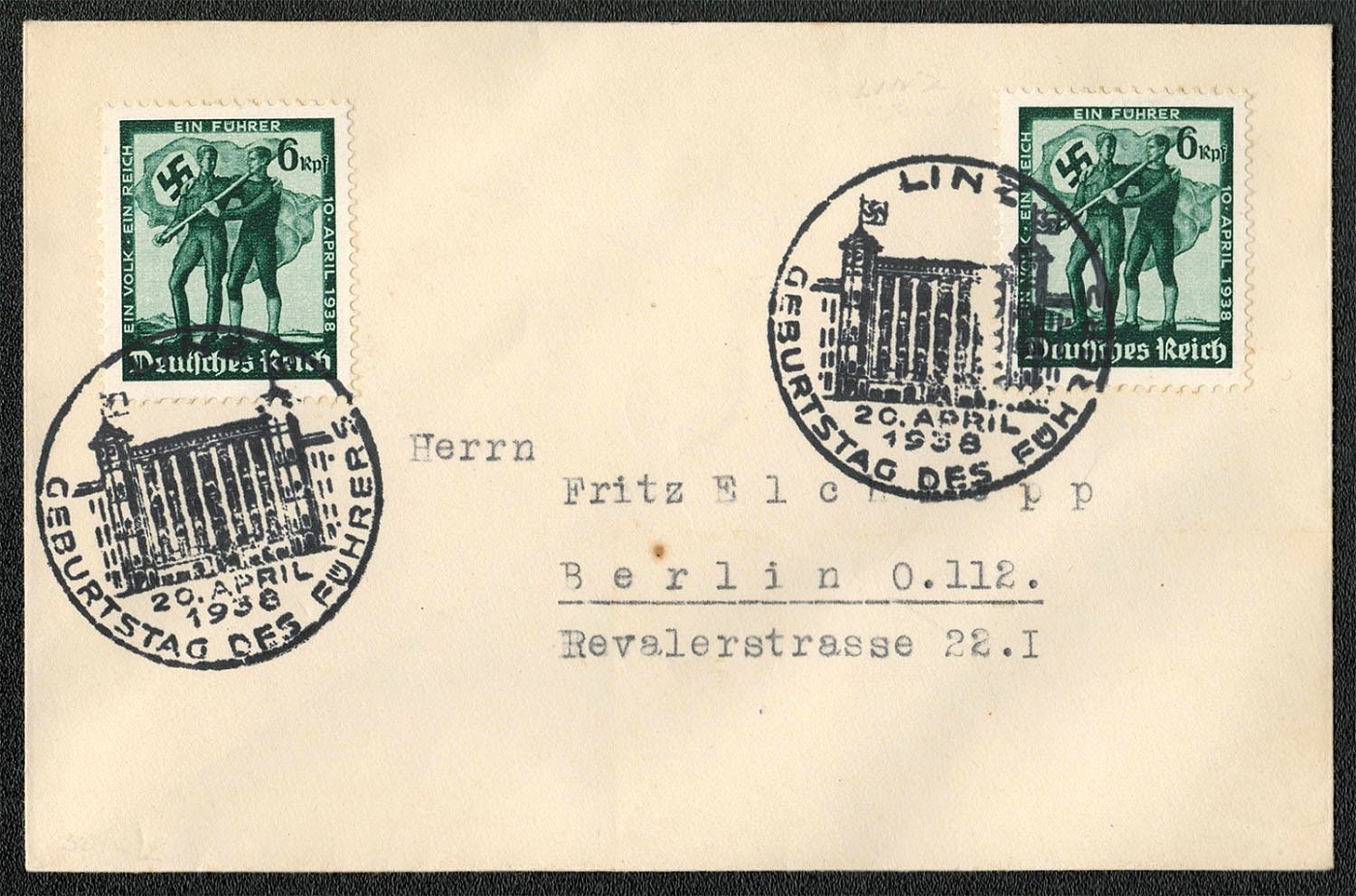
1938 Scott 484 postmarked in Linz on 20 April
1938 Scott 484 postmarked in Linz on 20 April
Sold for:
$5
921
$5
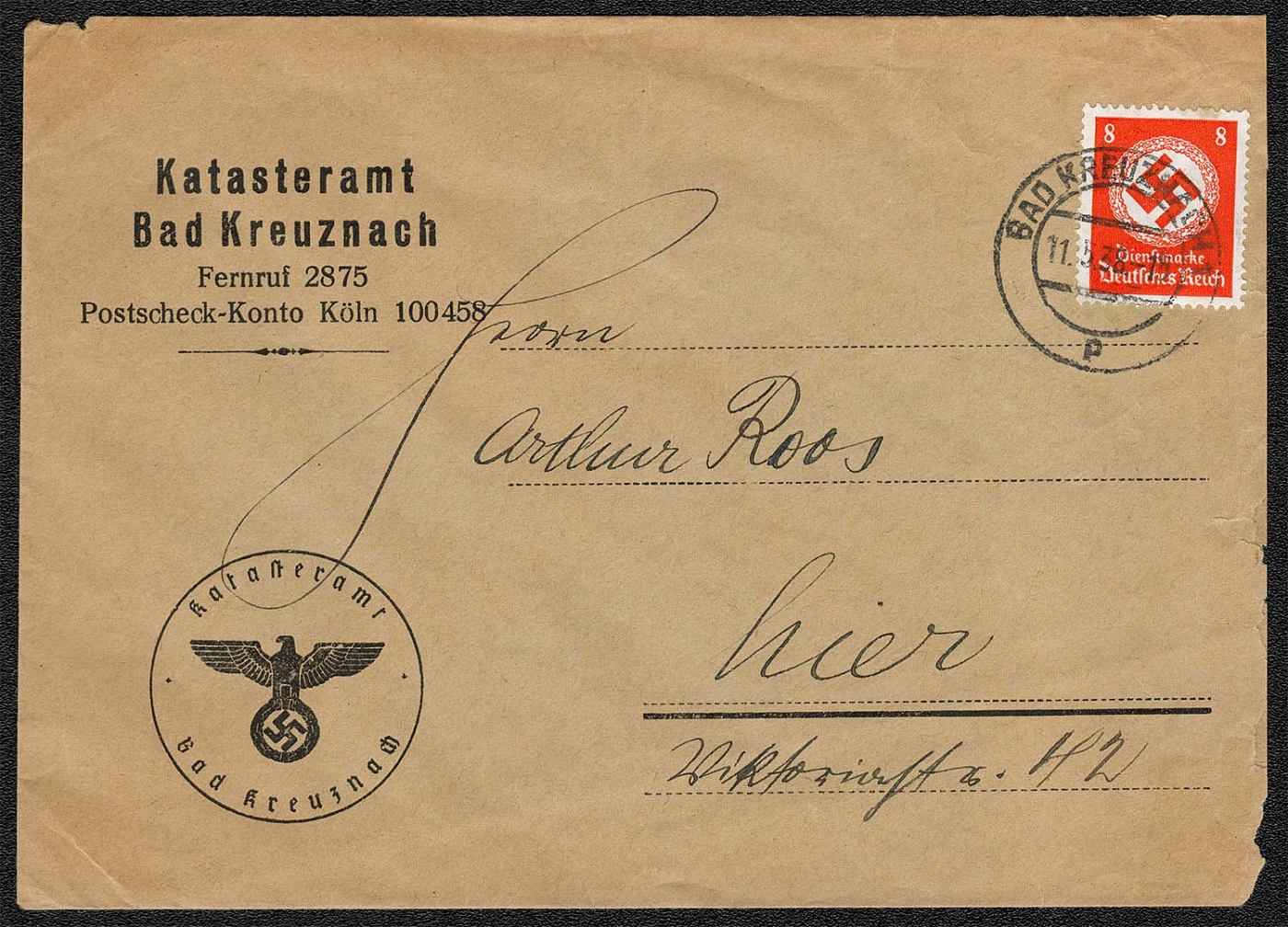
1938 Official mailing franked with Scott 084
(The Official Stamp Issue of 18 January 1934) Official mailing franked with Scott 084 from the StetaSteramt (Land Registry Office) of Bad Kreuznach on 11 May 1938. § Having astutely calculated the pacifist mood in the League of Nations, Hitler linked the breach of the Versailles Treaty (by his troop movement into the Rhineland) in March 1936 to a new offer of a 25-year non-aggression pact with France, Belgium and the Netherlands. Hitler’s triumph and the considerable growth of his prestige both domestically and internationally was not only based on overestimation of German military strength by the Western powers, it is believed to have enormously fostered an overestimation of himself and his claim to infallibility. Hitler became increasingly deaf to the advice and warnings of his military and political experts. Today, historians agree that an energetic military reaction by the West to the breach of the treaty would have led, within a few days, to the military collapse of the Third Reich.
Sold for:
$5
922
-
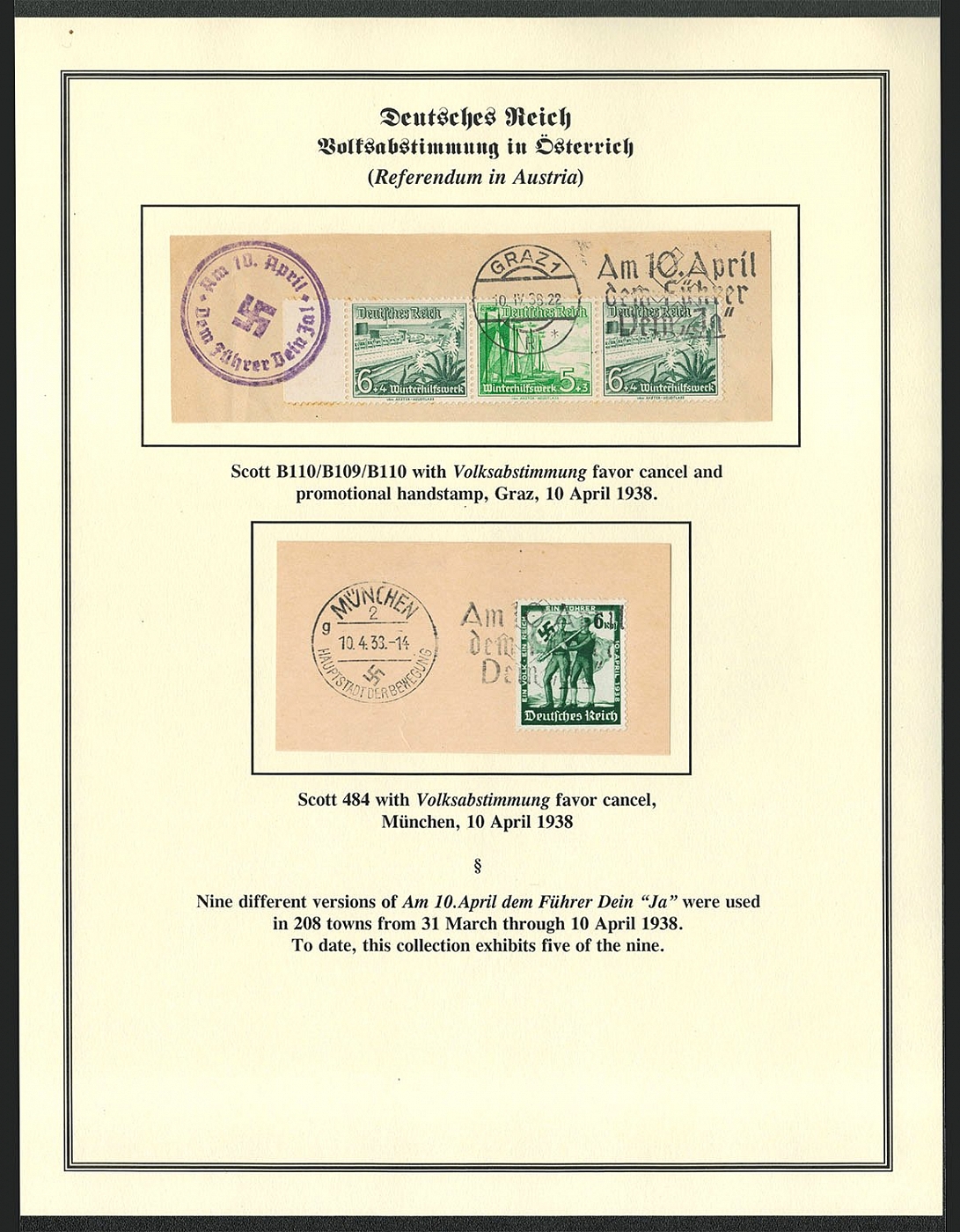
923
$5
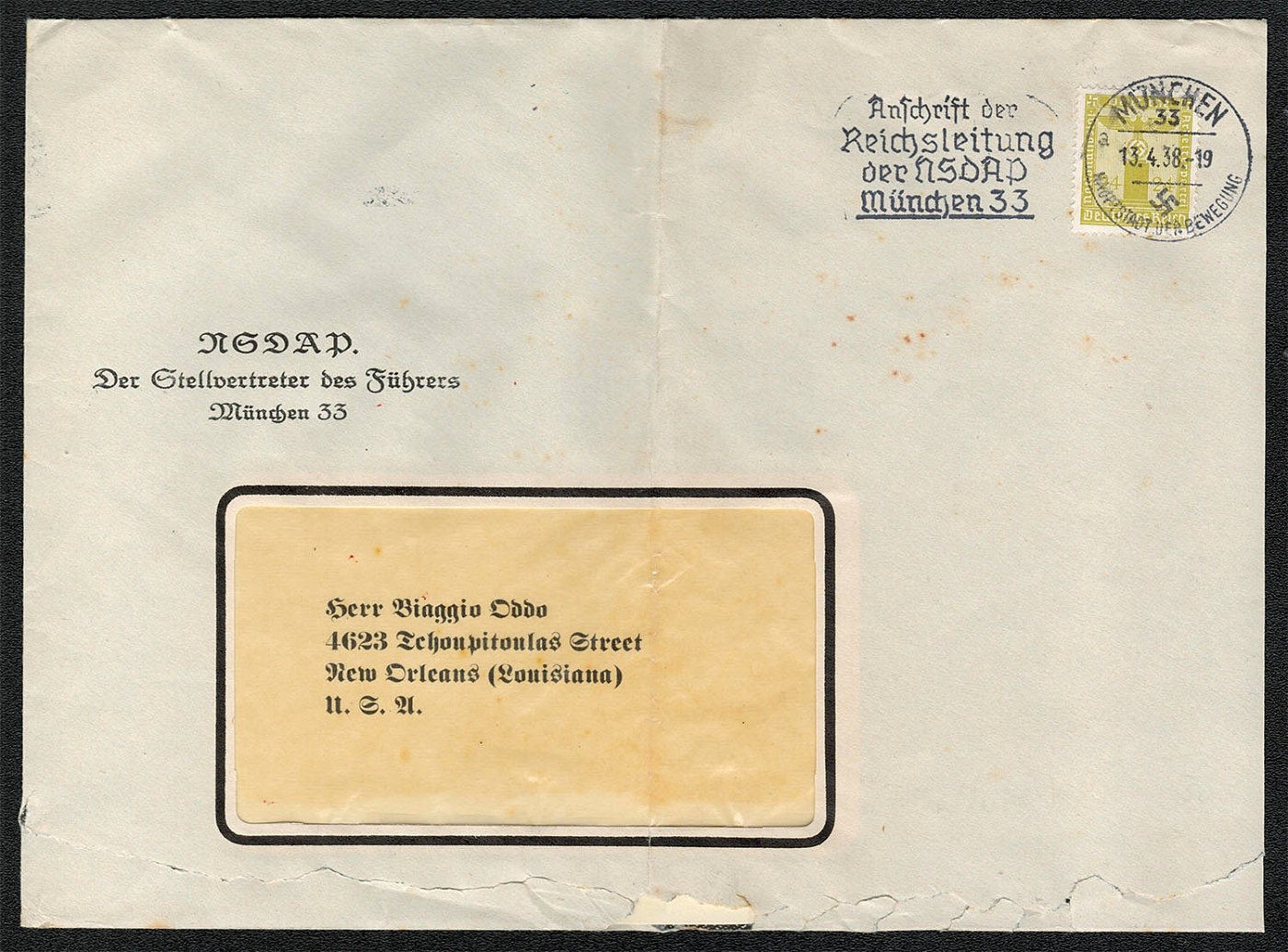
1938 Official cover with printed corner card franked with Scott S24 posted in Munich
Official cover with printed corner card franked with Scott S24 posted in Munchen on 13 April 1938. This series of Partei-Dienstmarken (official stamps) was for the exclusive use of the NSDAP, and the slogan postmark identifies the envelope as originating with the leadership of the NSDAP. The corner card reads: NSDAP, Office of the Deputy to the Fuhrer. The back flap of the envelope has the abbreviation St. b. Jy. for Deputy to the Fuhrer. The missive came from Rudolf Hess’s Miinchen office. At the time it was mailed, only Hitler was more powerful than Hess. Hess joined the NSDAP in 1920, promoted the Fuhrer cult with devotion, and came personally as close to Hitler as the latter’s avoidance of personal relationships allowed. In 1932 he became head of the Political Central Commission of the NSDAP, and in 1933 he became Hitler’s deputy party leader. On May 10, 1941 Hess flew over the North Sea in an ME 110 and parachuted out over Scotland. He had decided to do what he could to make peace with England. The British imprisoned him. At the Nurnberg Trials in 1946 he was given a life sentence. Hess committed suicide in 1987. He was 93 years old, and the last prisoner in Spandau Prison.
Sold for:
$5
924
$5
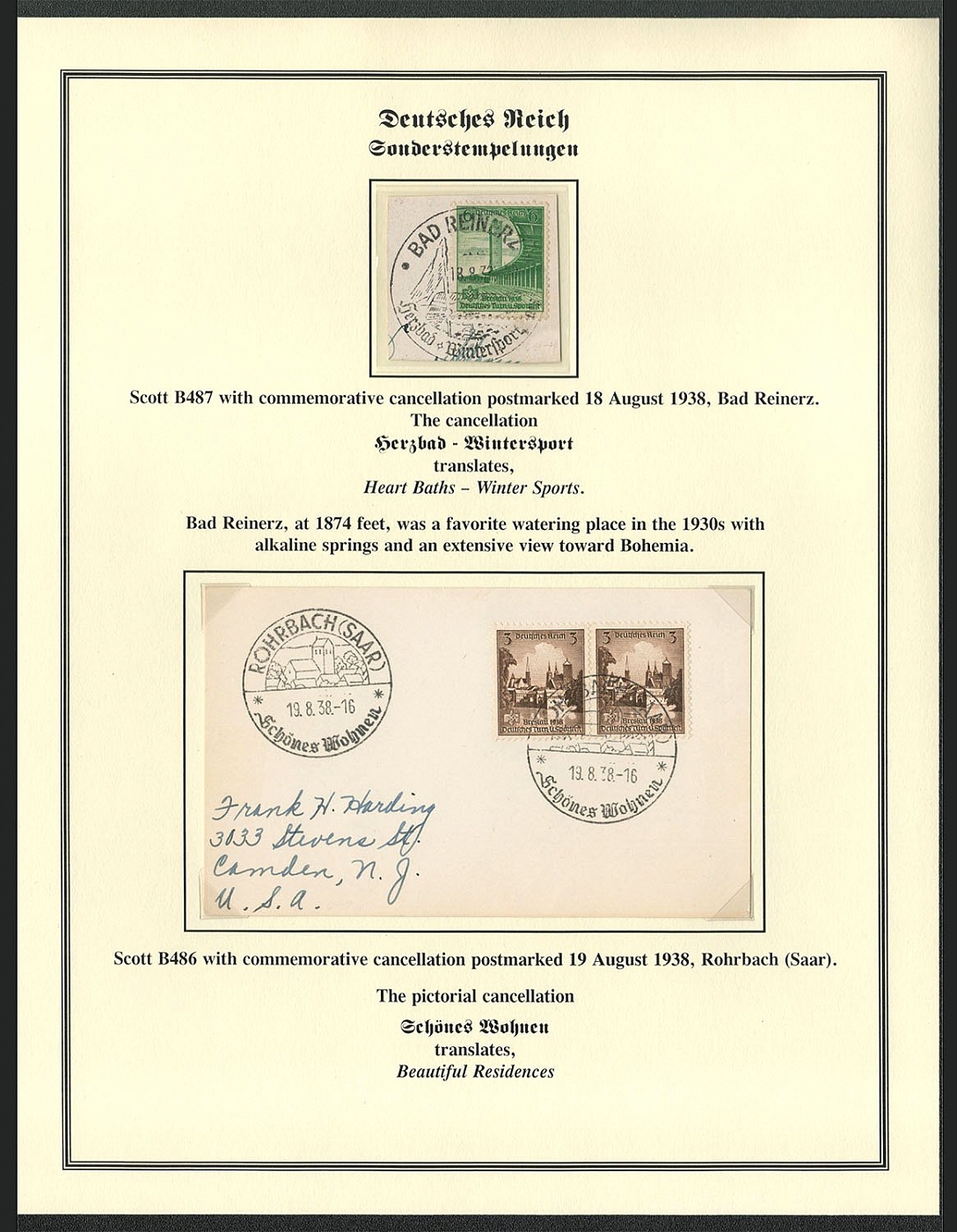
1938 Commemorative cancellation postmarked 19 August, Rohrbach
Scott B486 with commemorative cancellation postmarked 19 August 1938, Rohrbach (Saar). The pictorial cancellation Beautiful Residences
Sold for:
$5
926
-

1938 Saarpfalz District Theater
Saarpfalz District Theater Design by G. Fritz. Photogravure printing on surfaced paper, perforated 13%. Issued 9 October 1938. Valid until 31 December 1939.
Unsold
927
$5
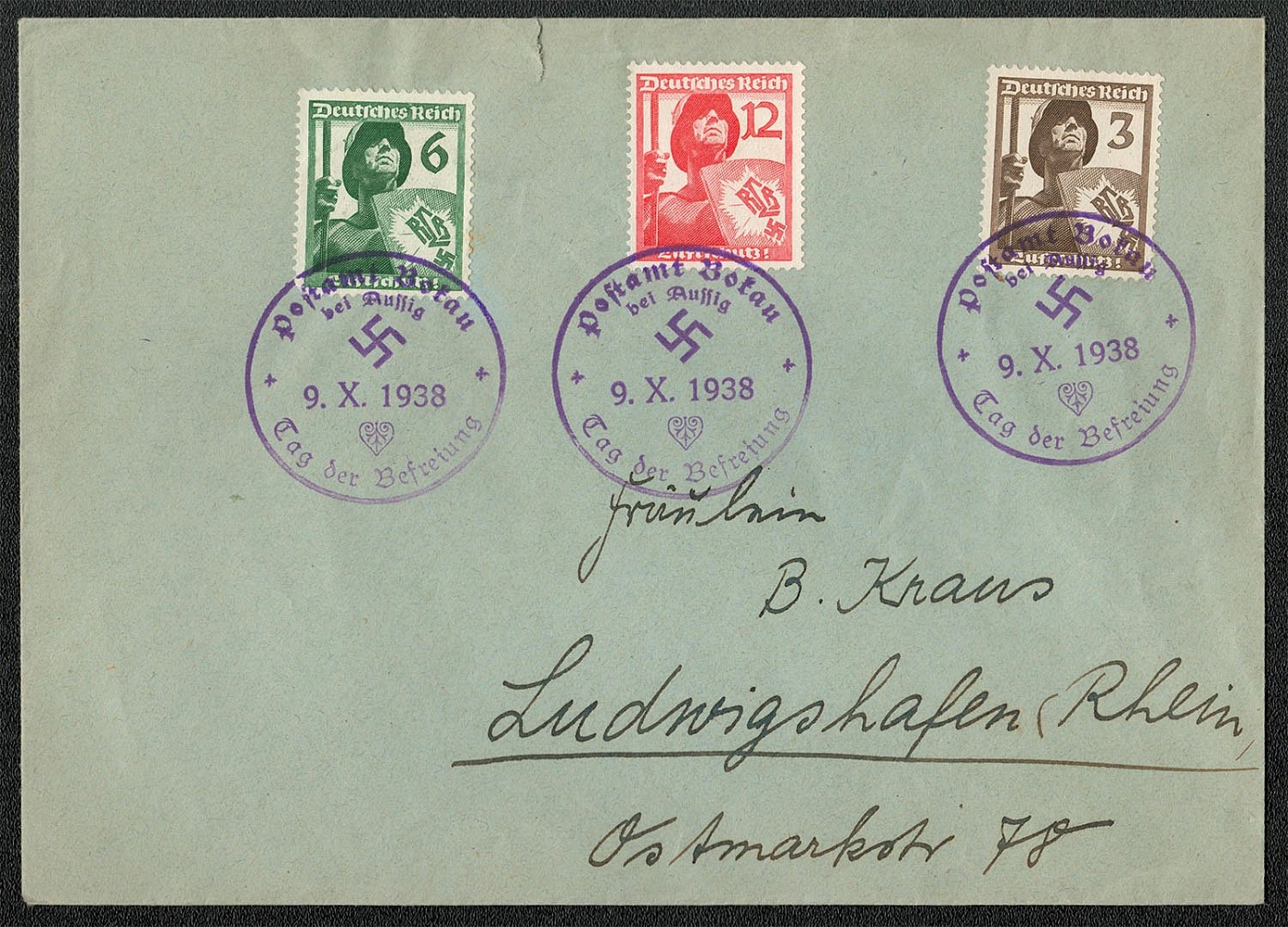
1938 Postally used cover franked with Scott 481-483 Special postmark The Day of Liberation
Philatelic, but postally used cover franked with Scott 481-483. The special cancel dated 9 October 1938 commemorates Ser 'Befrciluiu) (The Day of Liberation) when parts of Czechoslovakia were occupied by German forces. Aussig is the German name for a town that had a population of 43,000 in 1938. In the 1930s, Aussig was in the so-called Sudetenland, the German-settled area of northwest Bohemia on the Elbe River. At the end of the war, the town reverted to Czechoslovakia and now goes by the name of Usti nad Labern.
Sold for:
$5
928
-
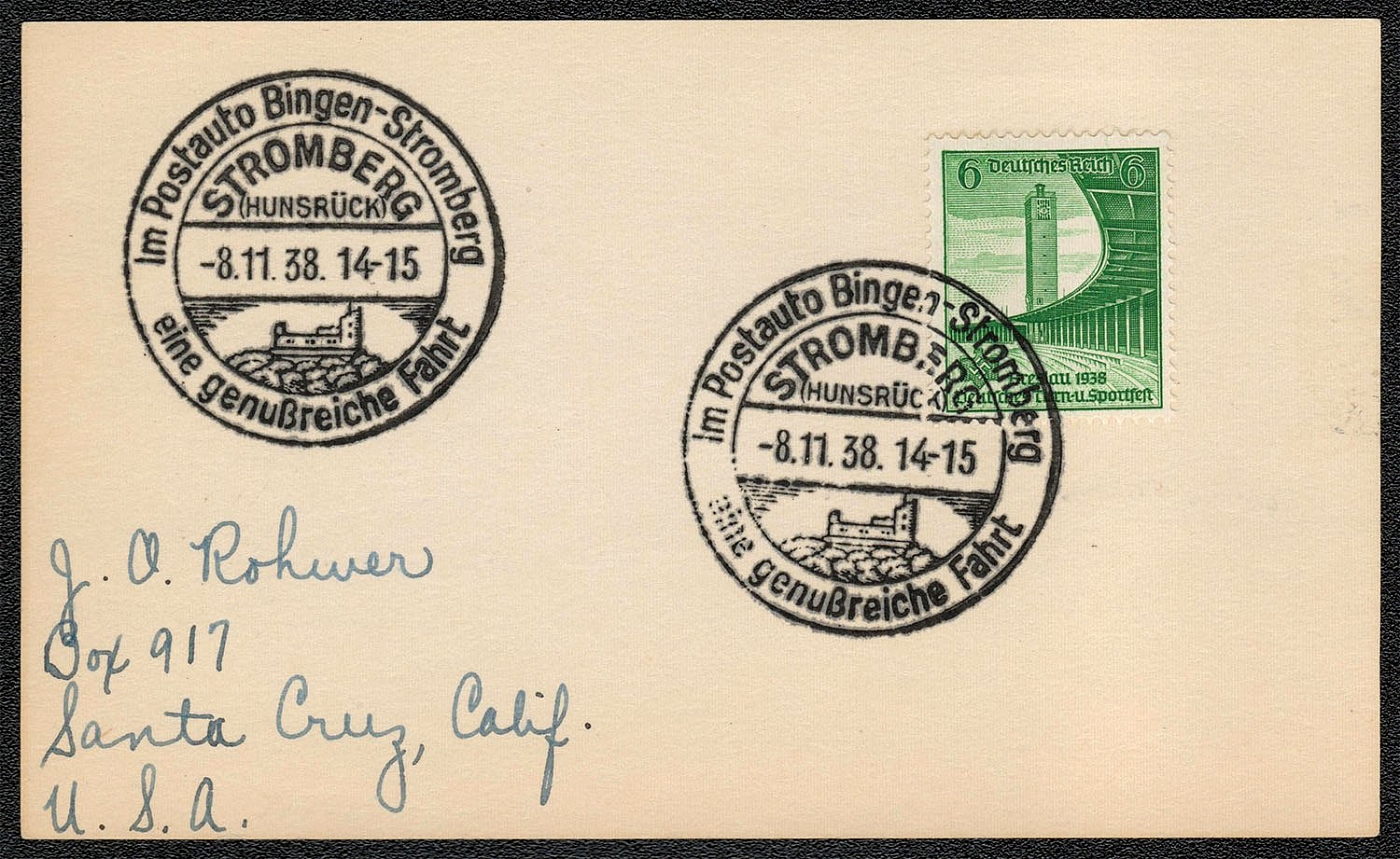
1938 Scott 487 with Special Postmark
A journey in the Bingen - Stromberg Post Office van is pleasant Scott 487 with Gefdlligkeitsstempel (favor cancellation*) postmarked: Stromberg (Hunsriick) - 8 November 1938. (It is noted that this cancel does not include the stars as illustrated in the Bochmann Catalog.)
Unsold
929
-
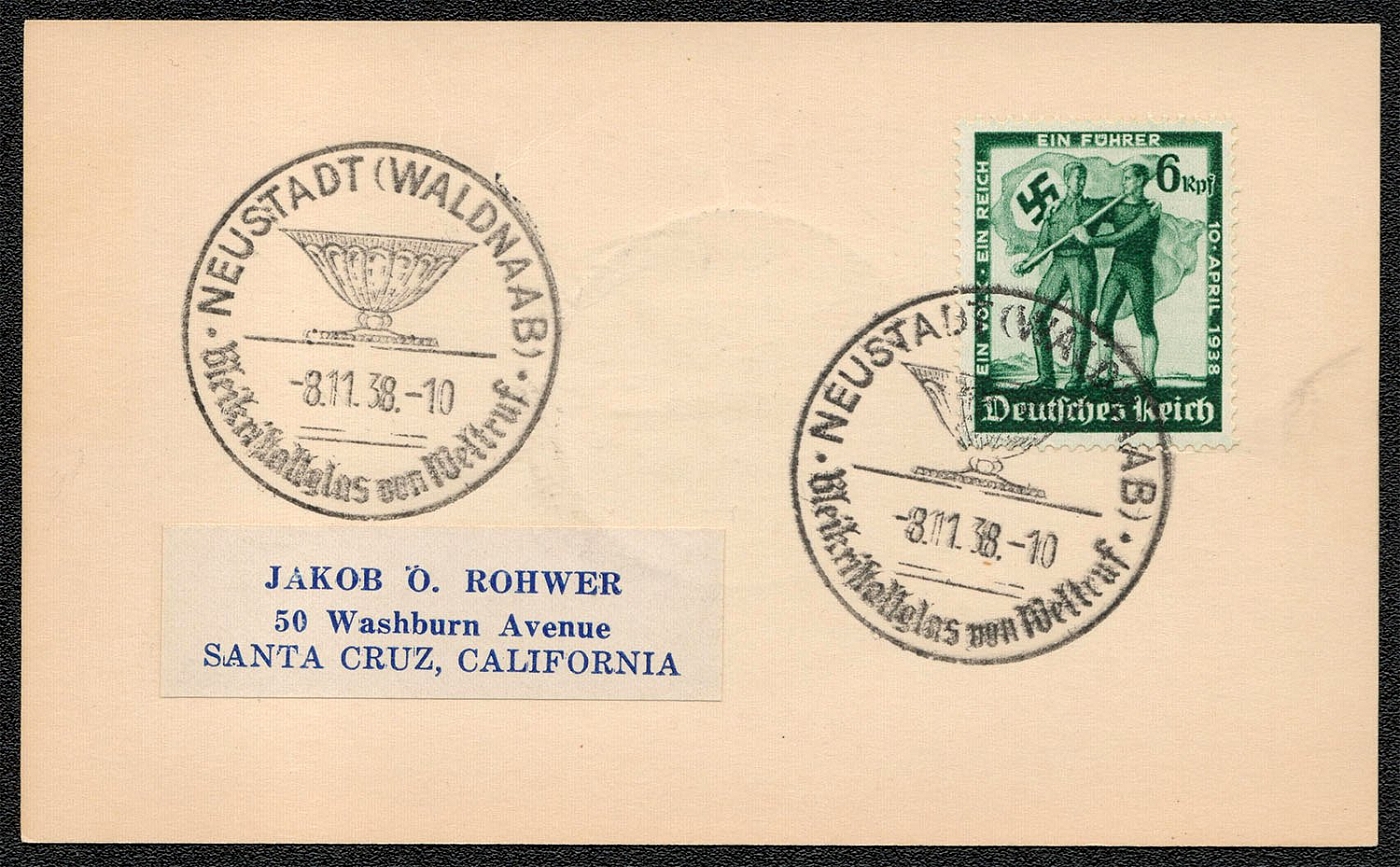
1938 Scott 487 with Special Postmark Neustadt
Leaded Crystal Glass from Weltruf Scott 485 with Gefdlligkeitsstempel (favor cancellation) postmarked: Neustadt (Waldnaab) - 8 November 1938.
Unsold
930
-
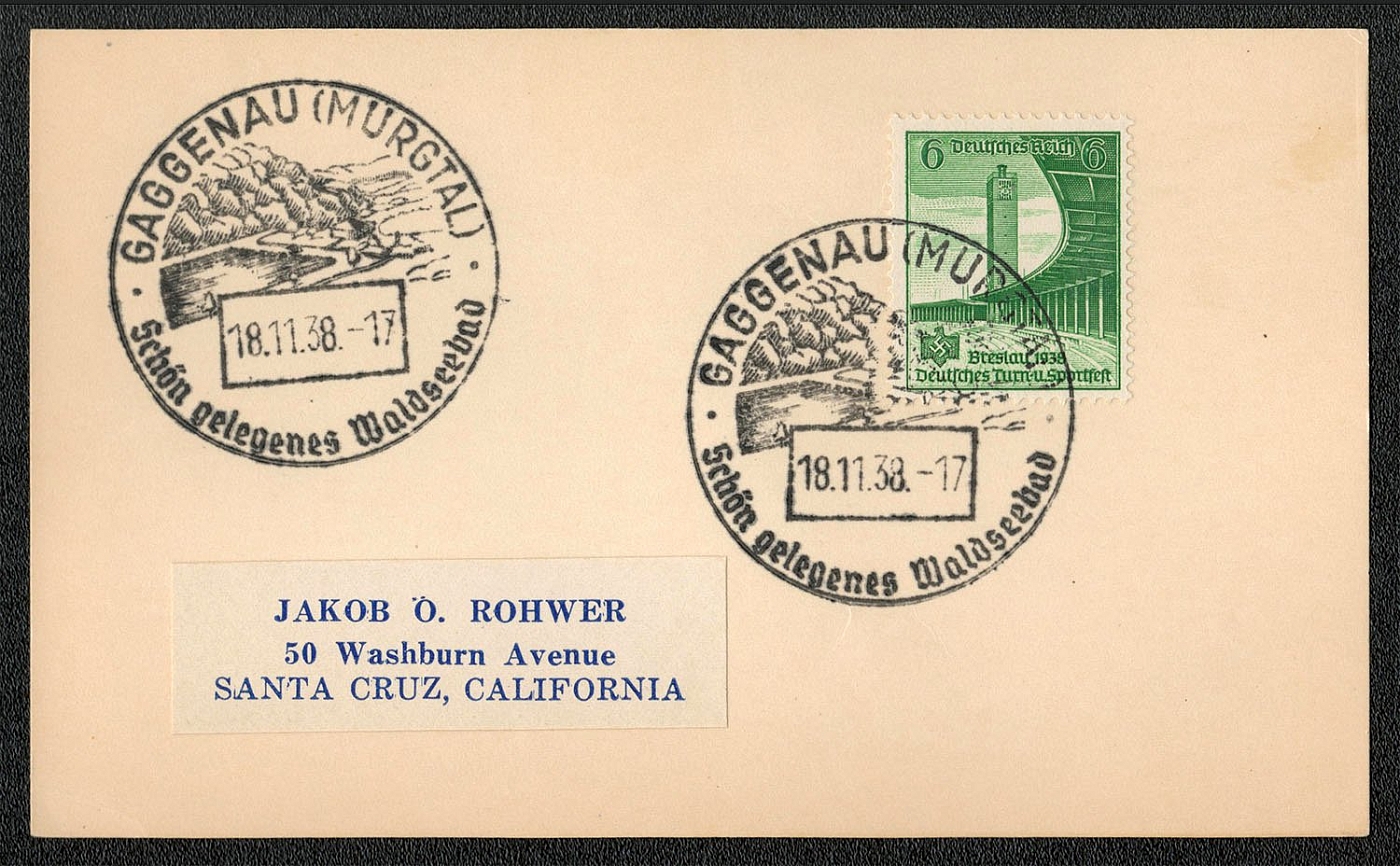
1938 Scott 487 with Special Postmark Gaggenau
Beautiful, convenient Waldseebad Scott 487 with Gefalligkeitsstempel (favor cancellation) postmarked: Gaggenau (Murgtal) 18 November 1938.
Unsold
931
-
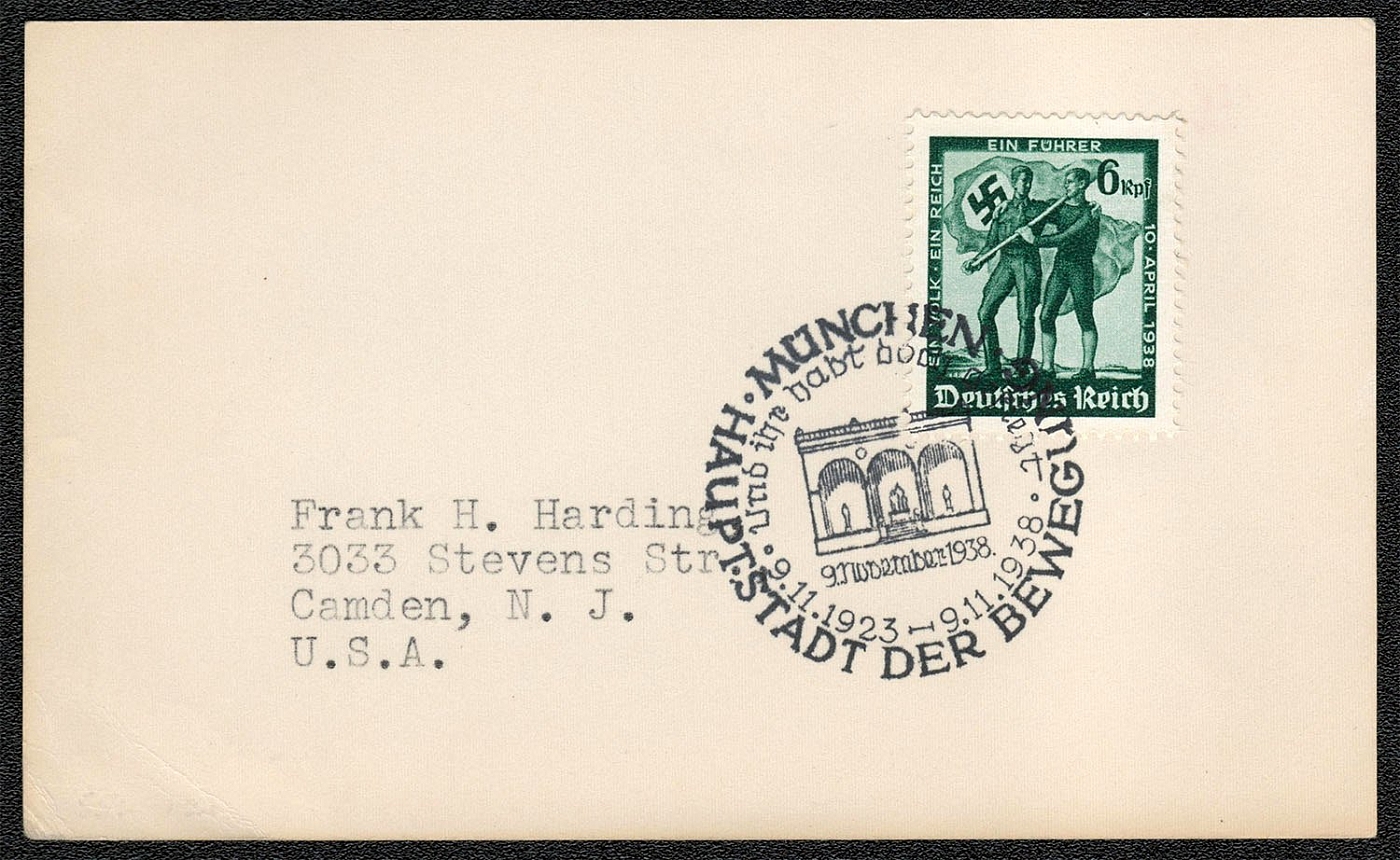
1938 Scott 485 with Special Postmark Munich
And you have conquered after all! Scott 485 with Gefalligk'eitsstempel (favor cancellation) postmarked: Munchen, Capital of the Movement - 9 November 1938. The Feldherrnhalle is depicted in the cancellation.
Unsold
932
-

1938 Scott 487 with Special Postmark Kelbra
At the Foot of the Kyffhauser Mountains Scott 487 with Gefalligkeitsstempel (favor cancellation) postmarked: Kelbra (Kyffhauser) - 5 November 1938. Depicted in the cancellation is a Bismarck tower.
Unsold
933
-
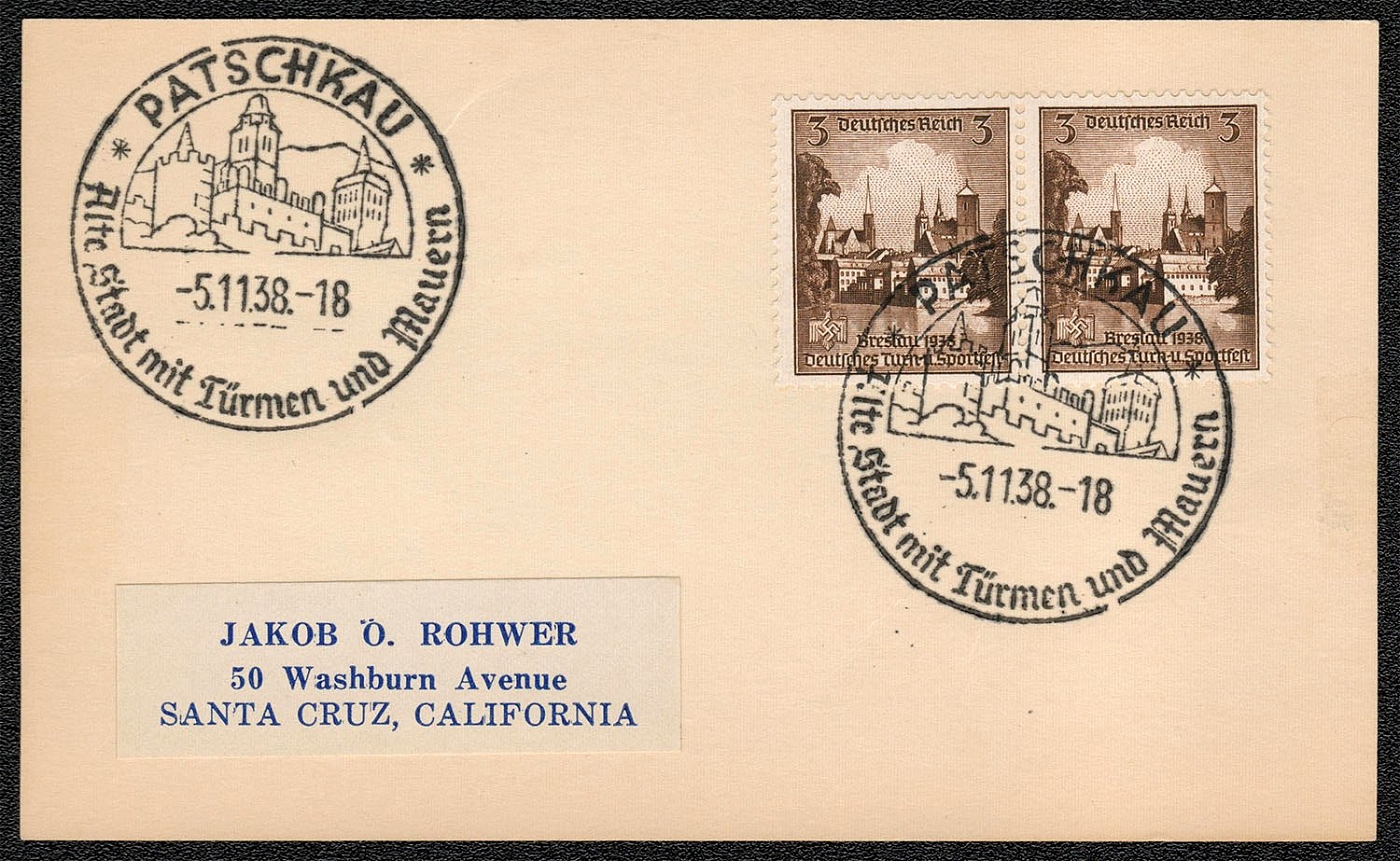
1938 Scott 486 with Special Postmark Patschkau
(The Old Town with Tower and Brickwork) Scott 486 with Gefalligkeitsstempel (favor cancellation) postmarked: Patschkau - 5 November 1938.
Unsold
934
-
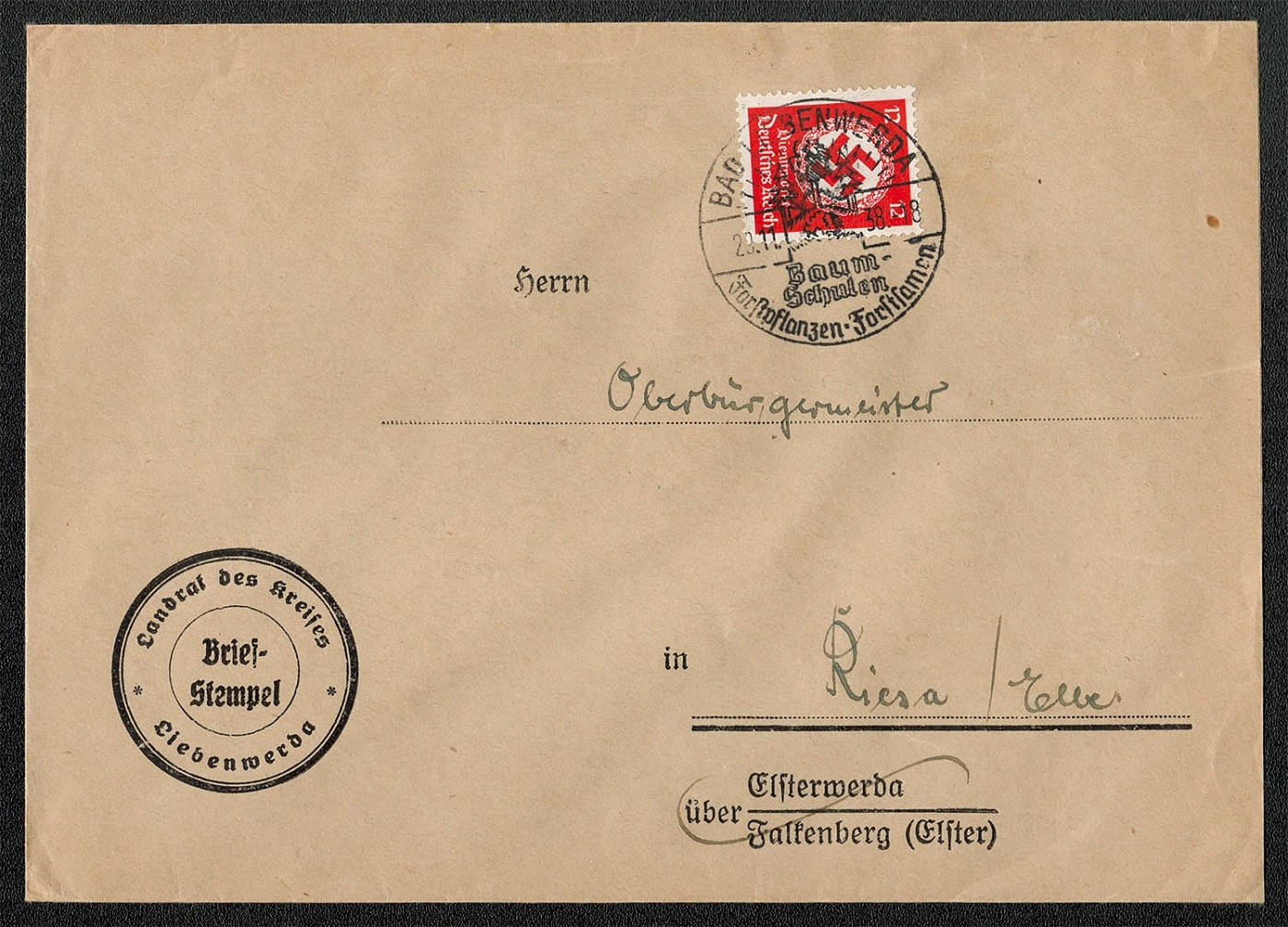
1938 Official mail franked with Sc 086 and posted 29 November
Official mail franked with Sc 086 and posted 29 November 1938 from the Vanbrat bed Streidcd Viclicntocrba (District Administrator of Liebenwerda) to the Oberburgermeister (Mayor) of Riesa on the Elbe River. Note the Bad Liebenwerda publicity cancellation: Tree Nursery Forest Plants-Forest Seed
Unsold
935
-
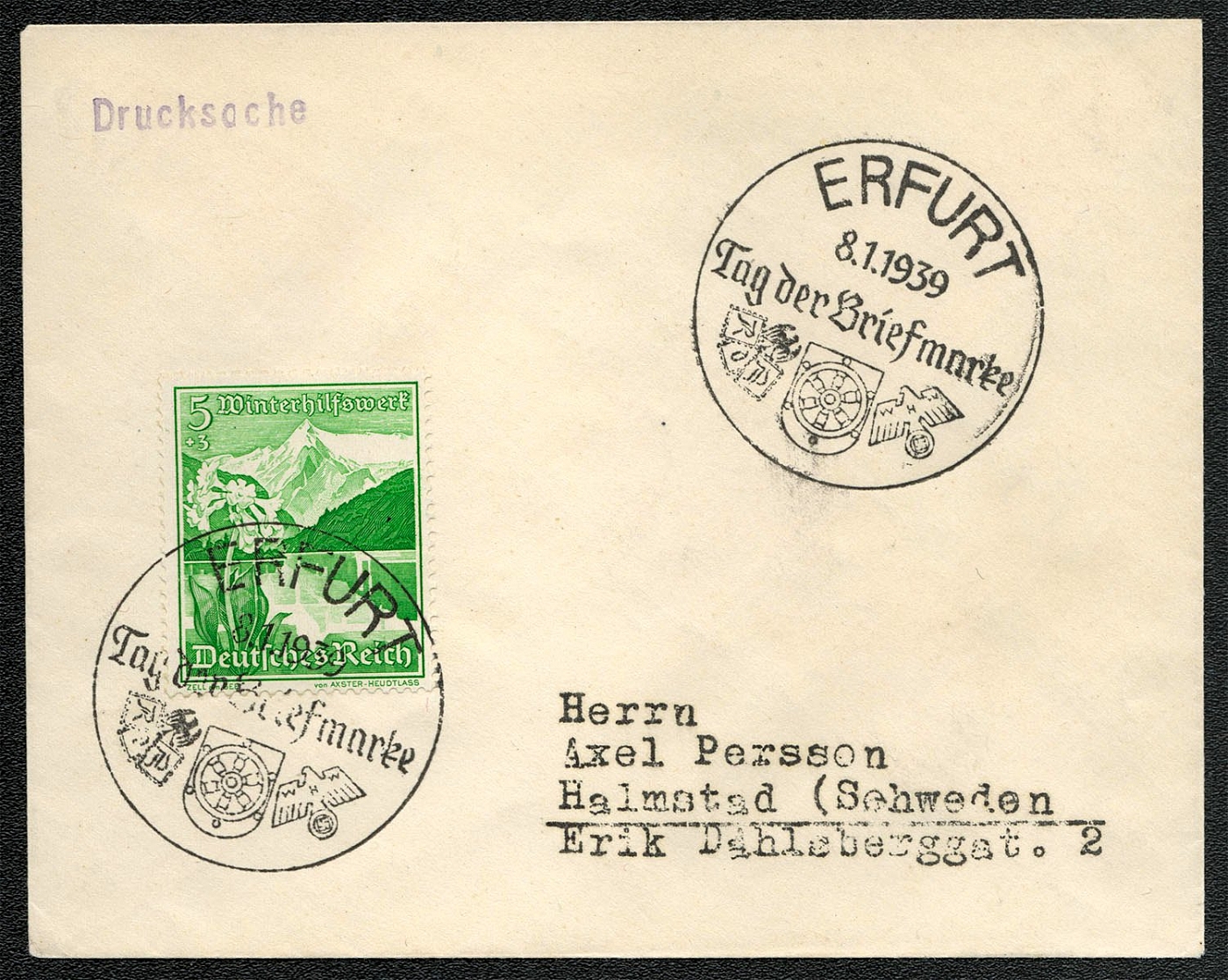
1939 Scott B125 on cover paying the printed matter (Drucksache) postal rate to Sweden
Scott B125 on cover paying the printed matter (Drucksache) postal rate to Sweden. The sonderstempel publicizes the Day Of the Stamp and is dated 8 January 1939, Erfurt. The same pictorial cancellation was used in 27 other towns, differing only in date, town name and Stadtwappen (coats of arms).
Unsold
936
-
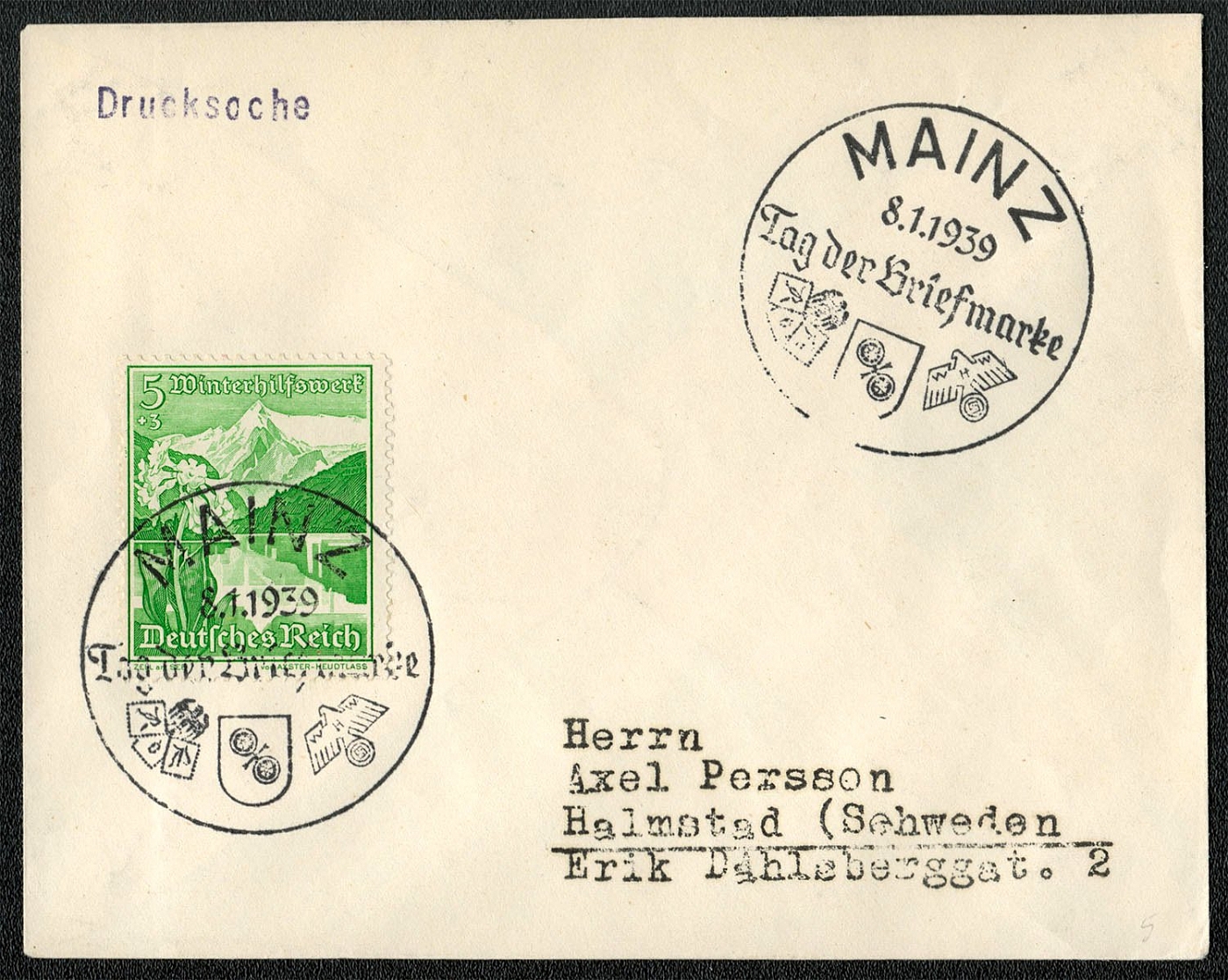
1939 Scott B125 on 2 covers paying the printed matter (Drucksache) postal rate to Sweden
Scott B125 on covers paying the printed matter (Drucksache) postal rate to Sweden. The sonderstempel publicizes the Day Of the Stamp and is dated 8 January 1939. Postings were in Mainz and Mannheim 2. The same pictorial cancellation was used in 26 other towns, differing only in date, town name and Stadtwappen (coats of arms).
Unsold
937
-
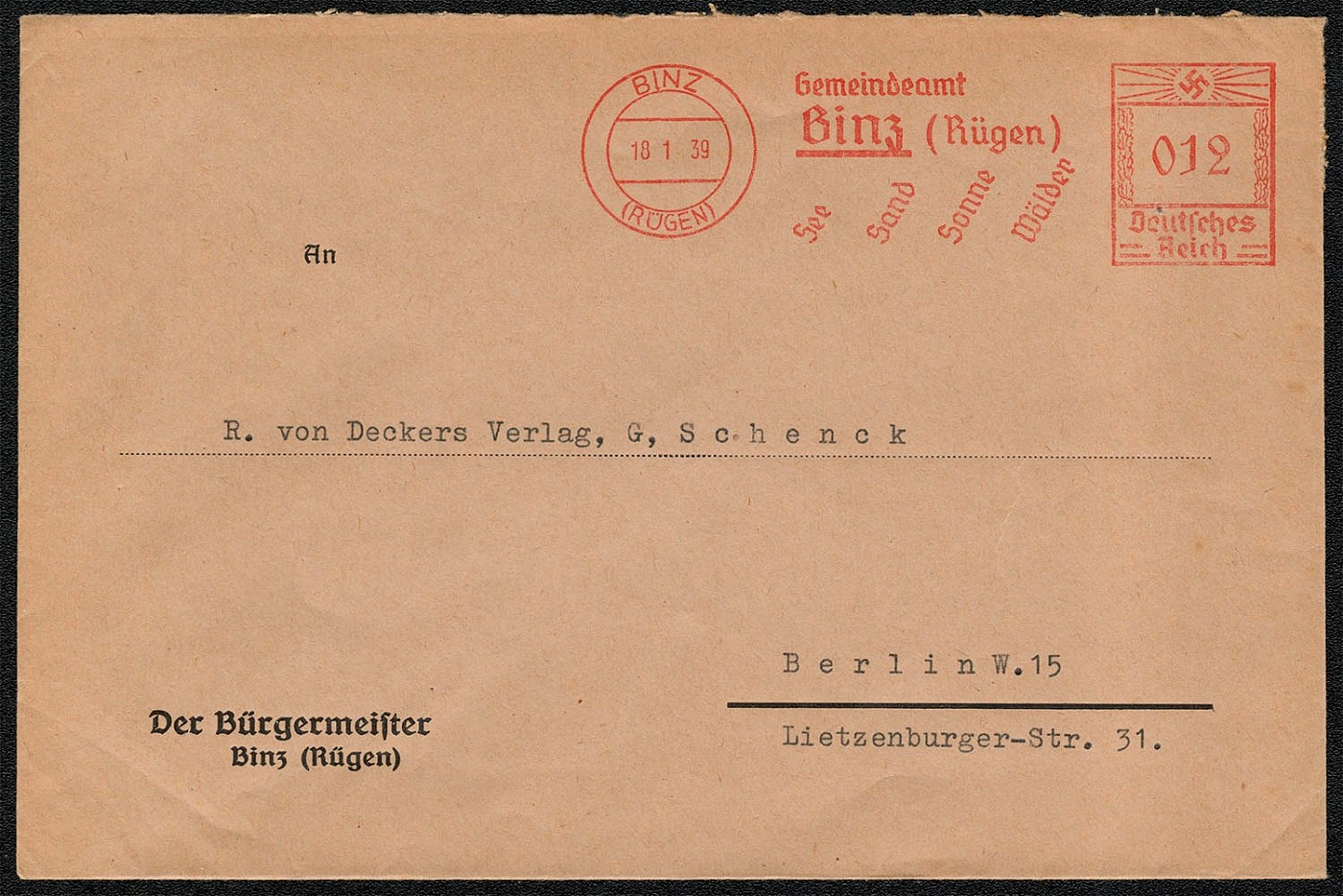
1939 Official cover franked with a 12 Rpf postage meter stamp
Official cover franked with a 12 Rpf postage meter stamp. Mailed on 18 January 1939 from The Office of the Mayor of Binz (Riigen), known for its sea, sand, sun and forest to G. Schenck of R. von Decker’s Publishing, 31 Lietzenburger St., Berlin W 15. Binz was a much-frequented northern Germany seaside resort of 1800 residents in 1939 with a good sandy beach, an esplanade, and a pier 656 yards long. It lies on the west side of the Granitz, a beech forest with pleasant promenades and views.
Unsold
938
-
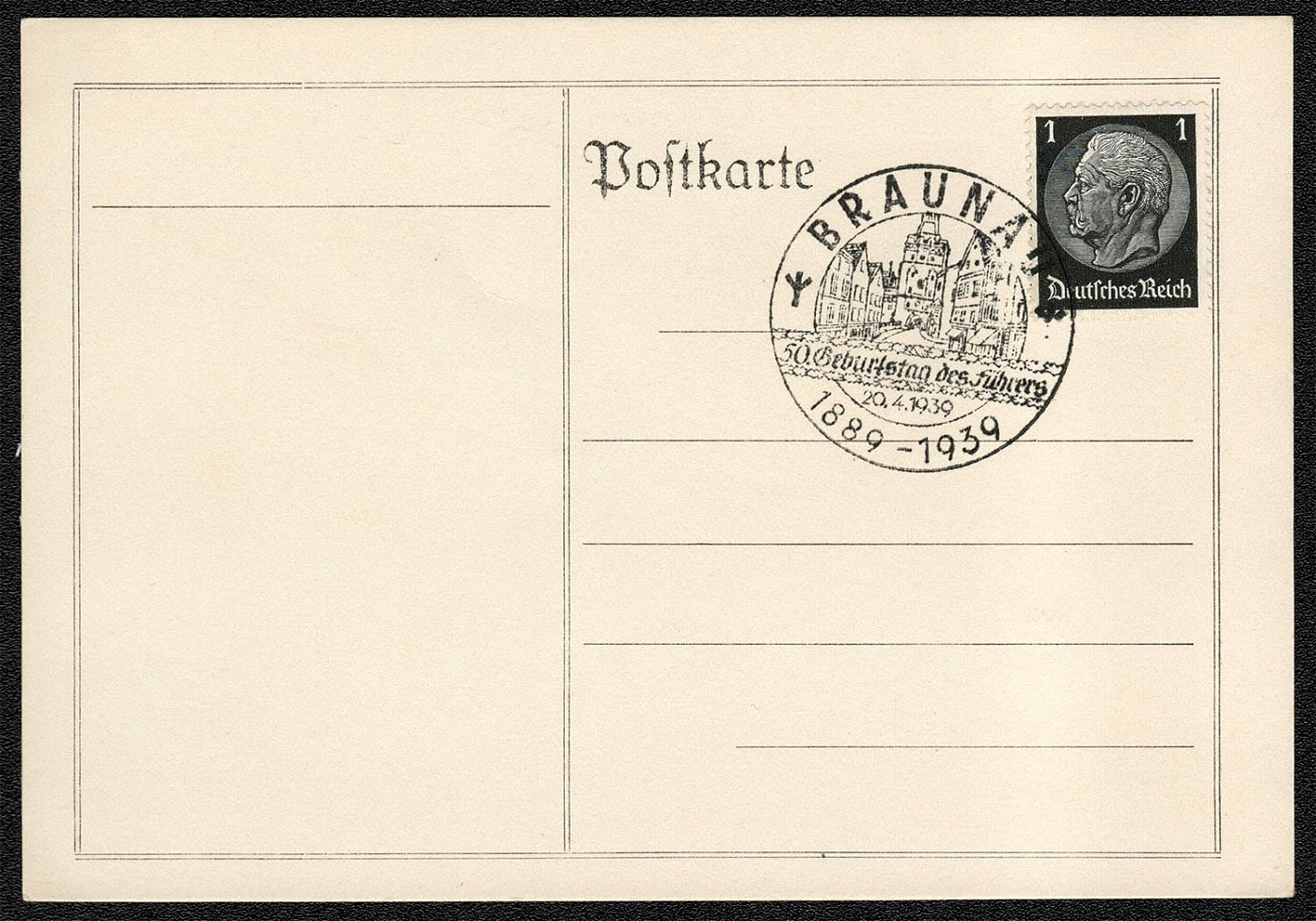
"1939 Hitler’s 5ff"" Birthday Postcard"
Braunau 20 April 1939 The sonderstempelungen issued for Hitler’s fiftieth birthday are among the most picturesque of the Third Reich era. In addition to the Austrian town of Braunau, in which the street where Hitler was born is depicted, seven other towns were chosen to reflect significant milestones in Hitler’s career.
Unsold
939
$5
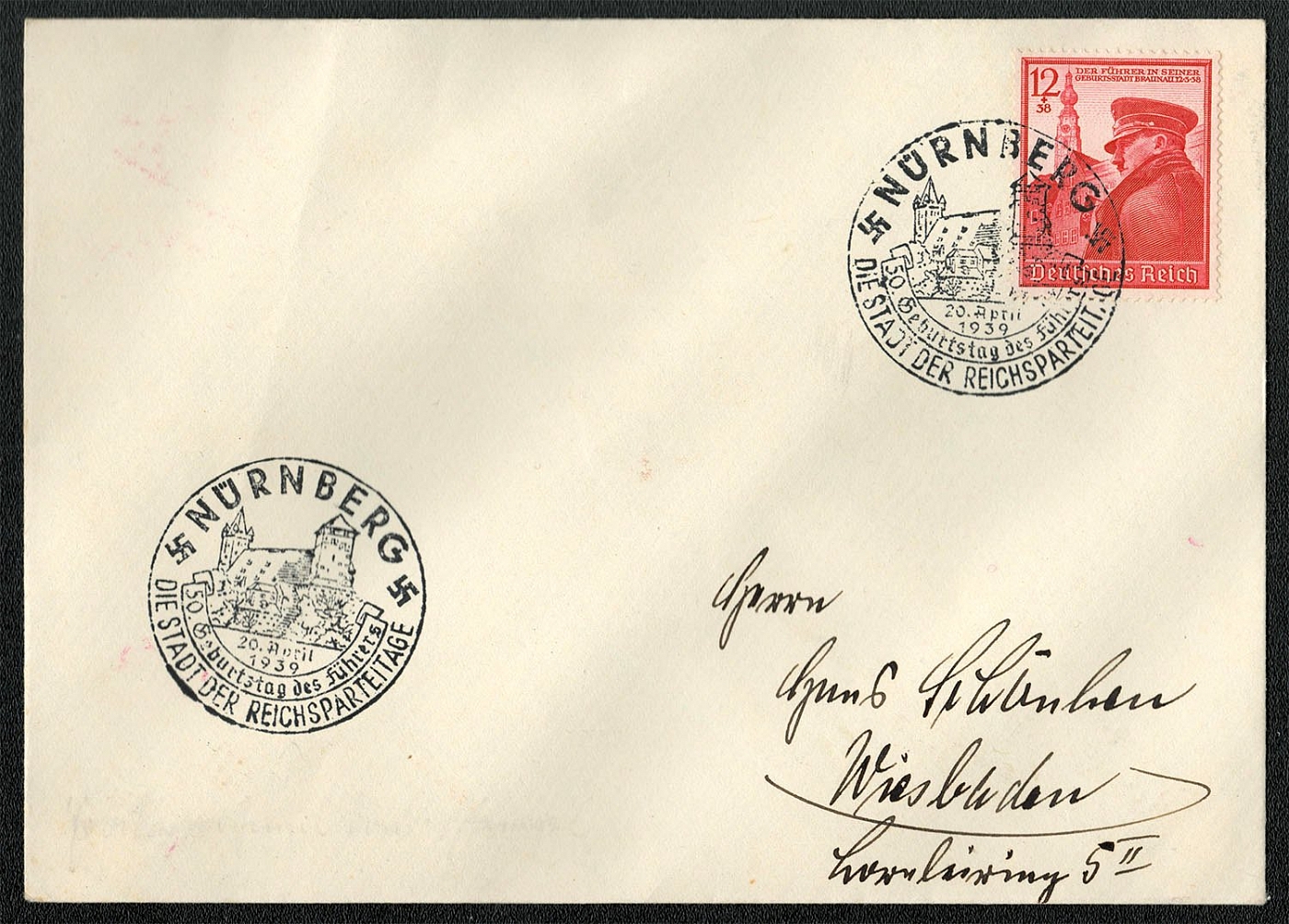
1939 Postally used cover in Nuremberg on 20 April
Postally used in Nurnberg on 20 April 1939. This stamp is considered one of the most dramatic of the Hitler stamps. Prof. Klein designed it after a photograph by Heinrich Hoffmann taken on Hitler’s only visit to his birthplace since childhood, on 12 March 1938, the day of the Austrian Anschluss. The house in which Hitler was born is not shown, as the background with the church steeple was thought more effective.
Sold for:
$5
940
$5
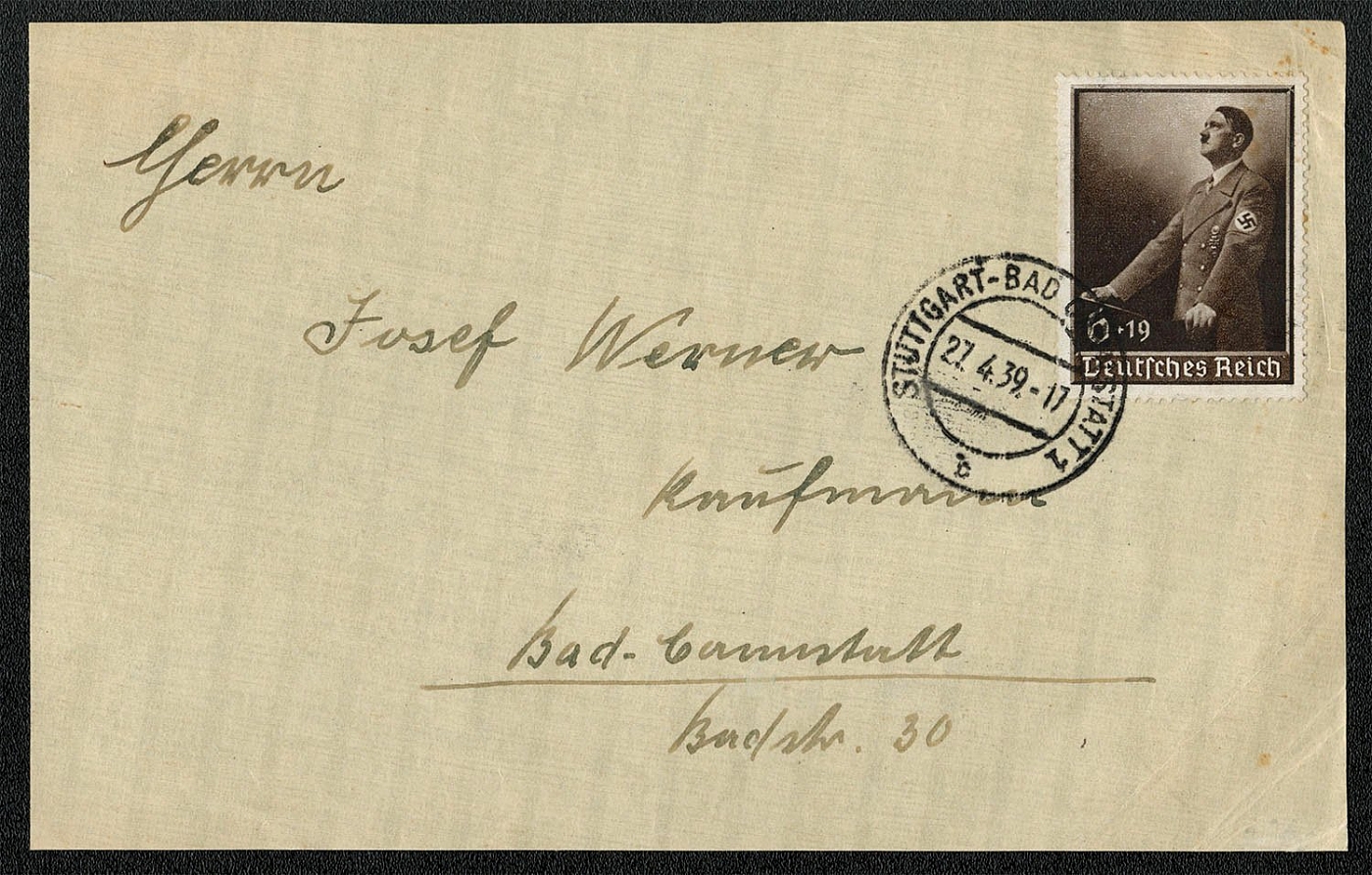
1939 Postally used cover 27 April in Stuttgart-Bad Cannstatt
Posted 27 April 1939 in Stuttgart-Bad Cannstatt. Cannstatt, an old town on the River Neckar 12 miles northeast of Stuttgart, claims two baths in nearby locations.
Sold for:
$5
941
$6
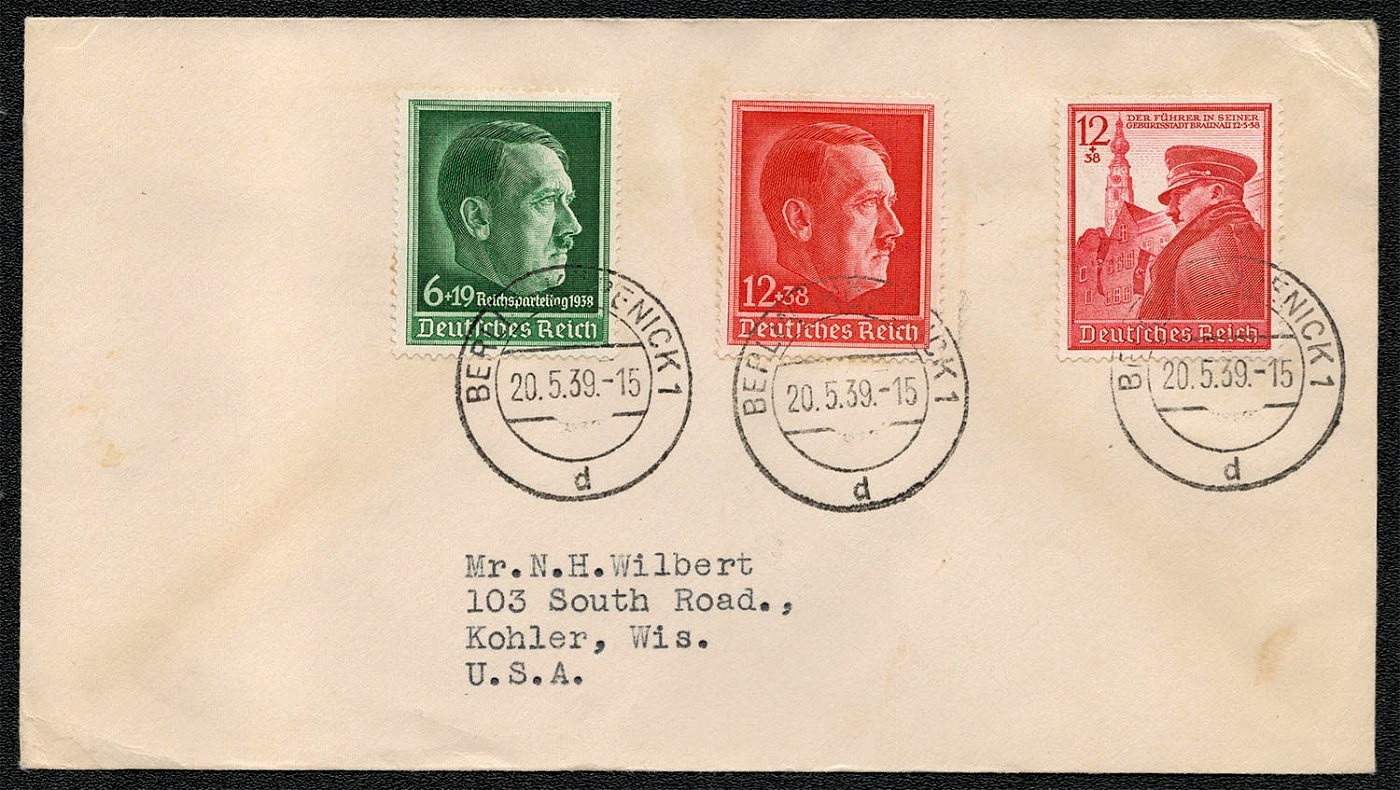
1939 Postally used cover franked with Scott Bl 18, B120 and B137. Mailed 20 May from Berlin-Kopenick
Philatelically prepared, but postally used cover franked with Scott Bl 18, B120 and B137. Mailed 20 May 1939 from Berlin-Kopenick 1.
Sold for:
$6
942
-
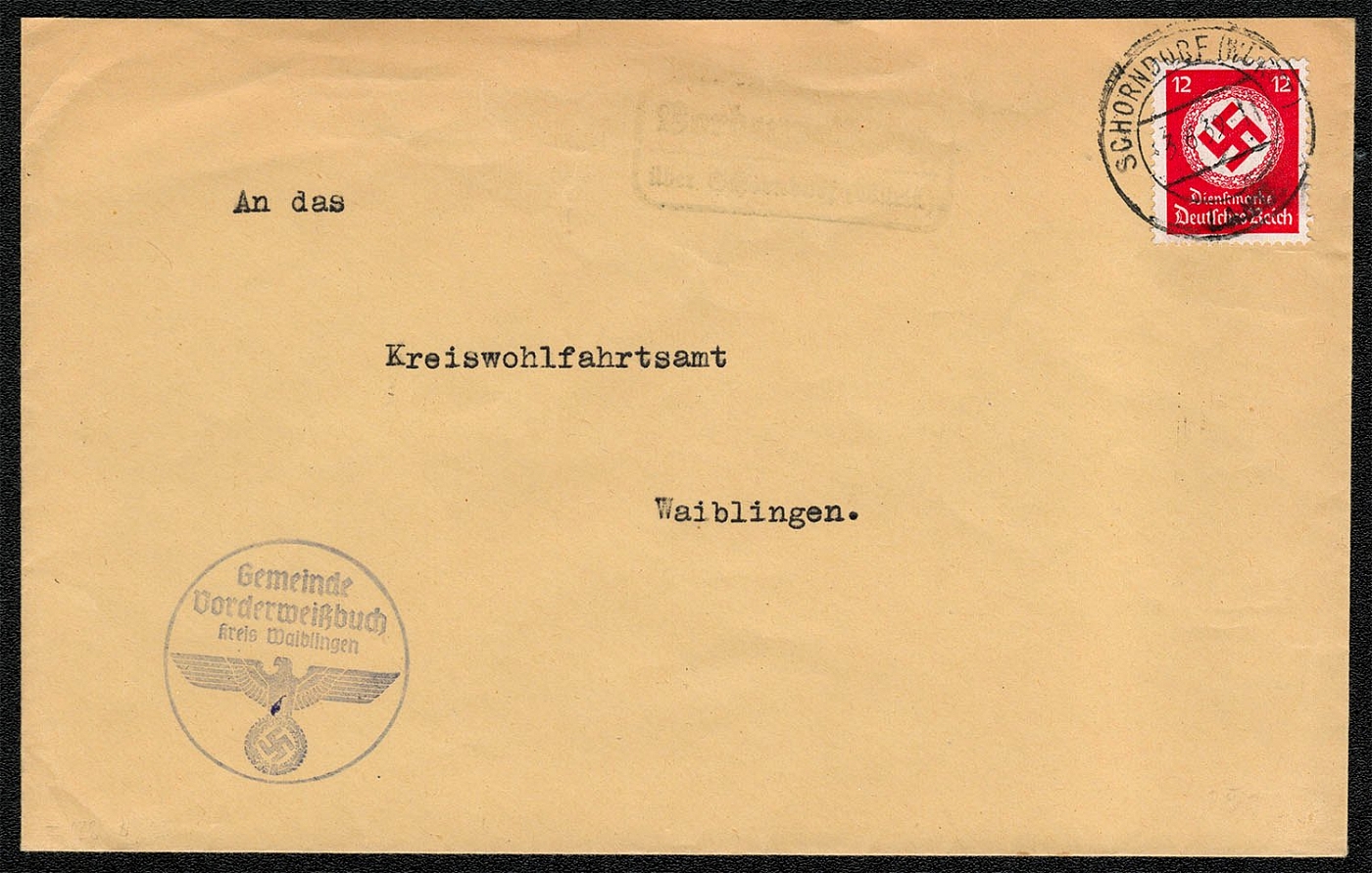
1939 Official mailing franked with Scott 086 from the Gemeinde Vorderweisbuch kreis Waiblingen
Official mailing franked with Scott 086 from the Gemeinde Vorderweisbuch kreis Waiblingen, apparently a municipal office responsible for white papers. The cover was posted in Schorndorf on 3 June 1939, and addressed to the Welfare Office in Waiblingen. The handstamp left of the circular date stamp is too faint to decipher. Schorndorf is an old industrial town that had approximately 8000 inhabitants in 1939. It is in southern Germany, about 15 miles east of Stuttgart. Waiblingen, a town of approximately 9000 inhabitants in 1939, is on the Rems River about 6 miles northeast of Stuttgart. A white paper is one published by a government office on a particular topic. A kreis is an administrative district.
Unsold
943
-
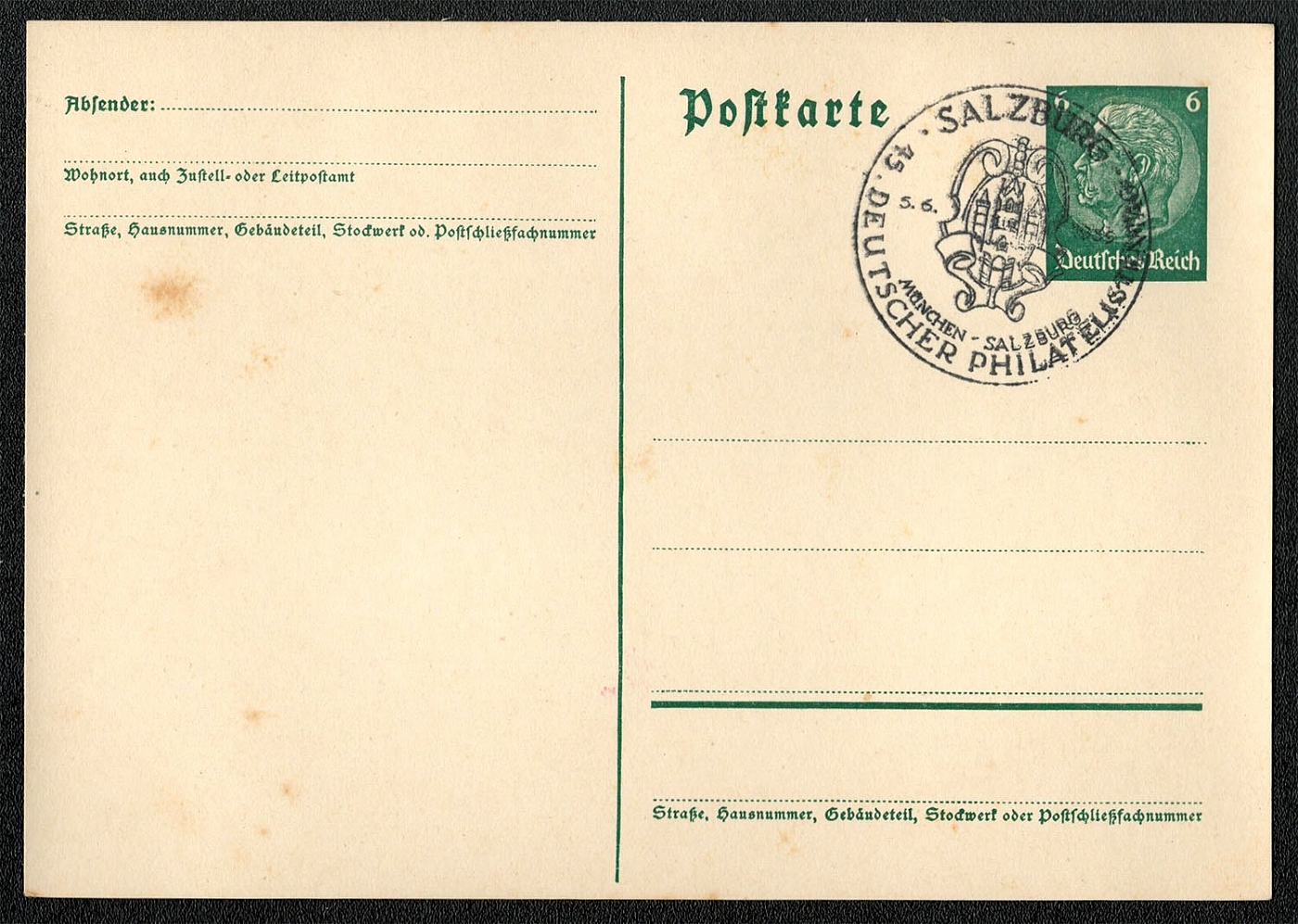
944
-
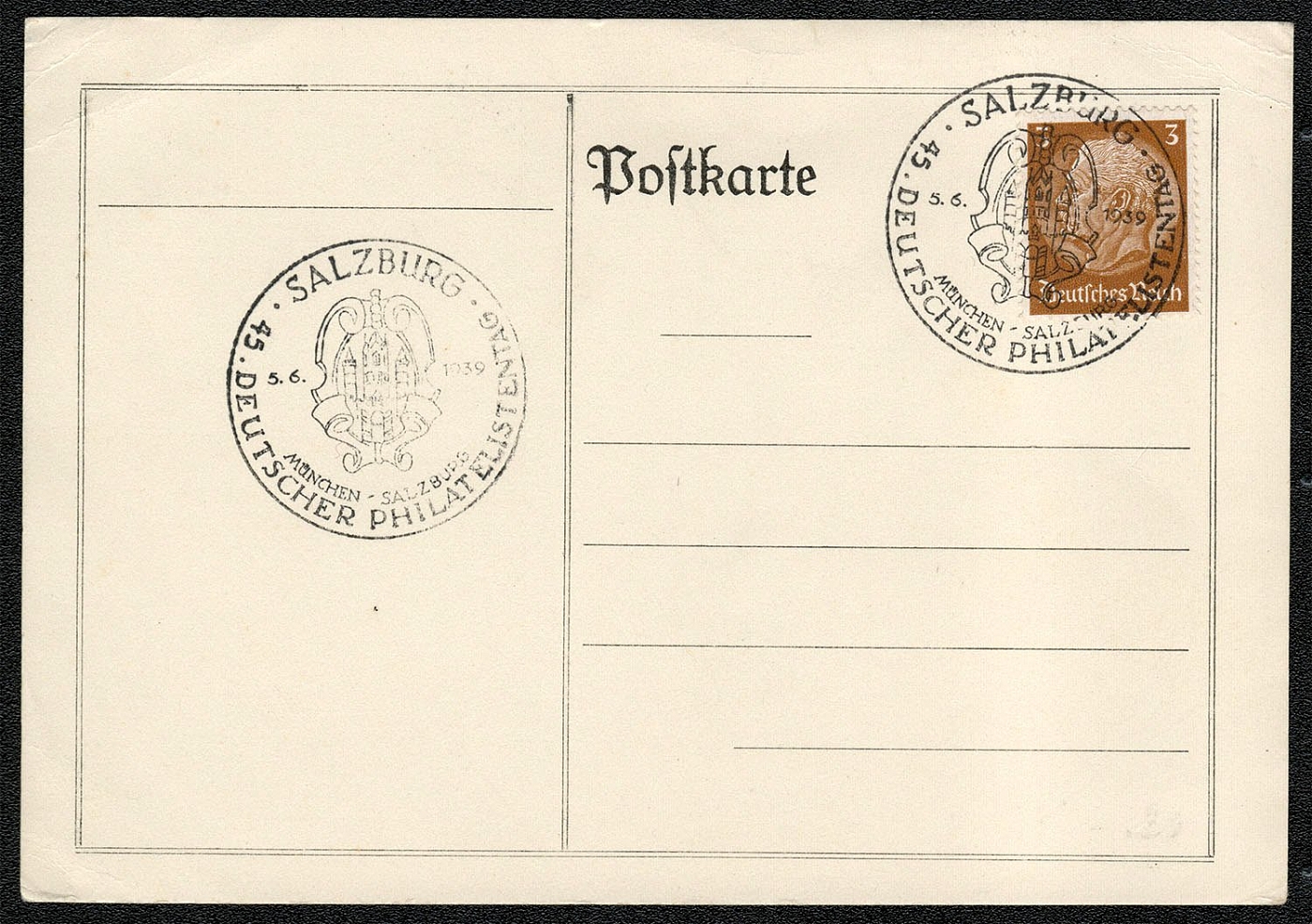
945
$40
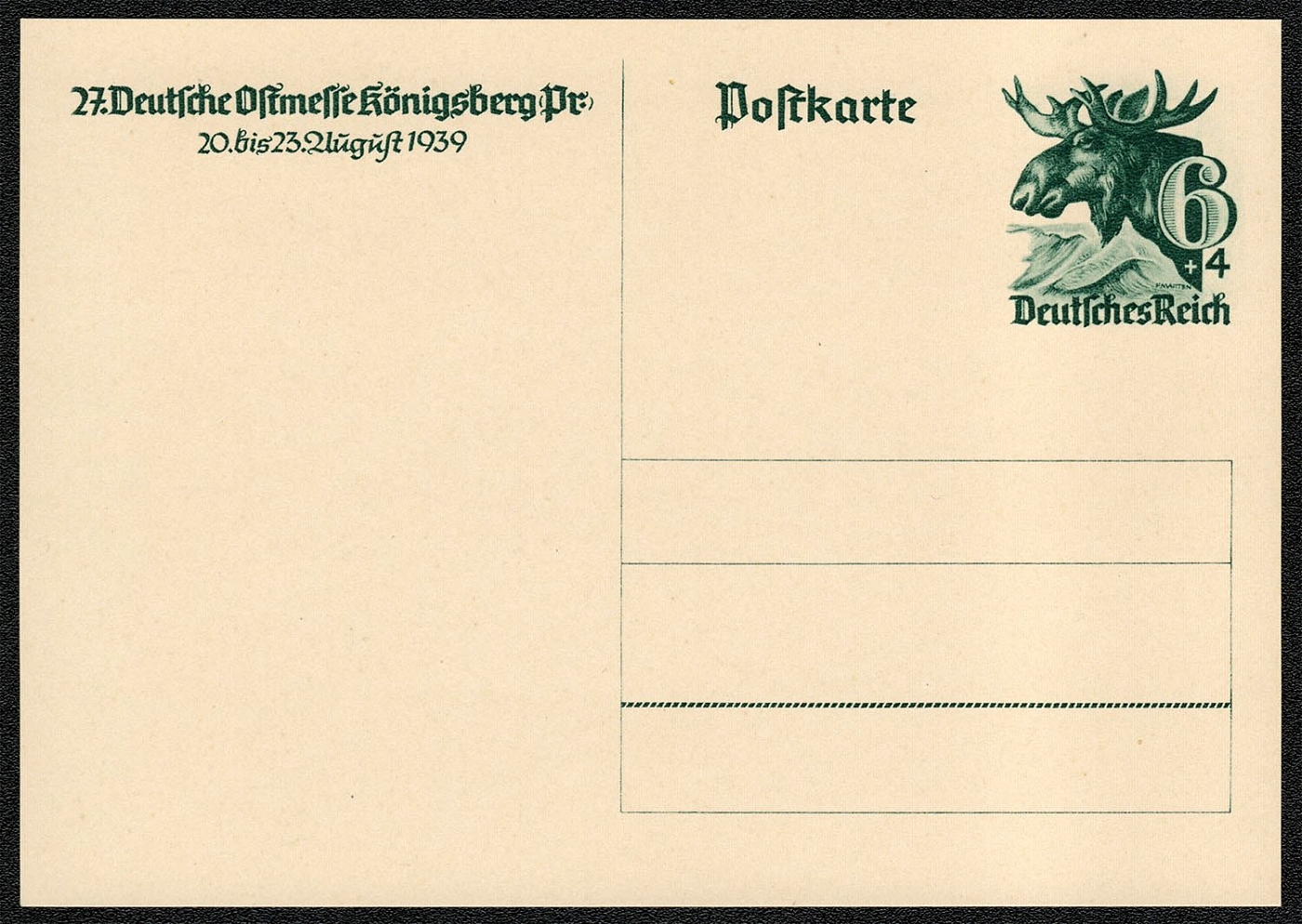
1939 Postcard (Michel P 280) issued for the 27th Annual German Eastfair held in Konigsberg
Commemorative postal card (Michel P 280) issued for the 27,h Annual German Eastfair held in Konigsberg (East Prussia), 20 through 23 August 1939. The imprinted stamp is of a moose head (Elchkopf). Designed by Professor F. Marten of Konigsberg. Issued 8 August 1939. A philatelic exhibition was held in conjunction with the Eastfair, and a special postmark was prepared.
Sold for:
$40
946
-
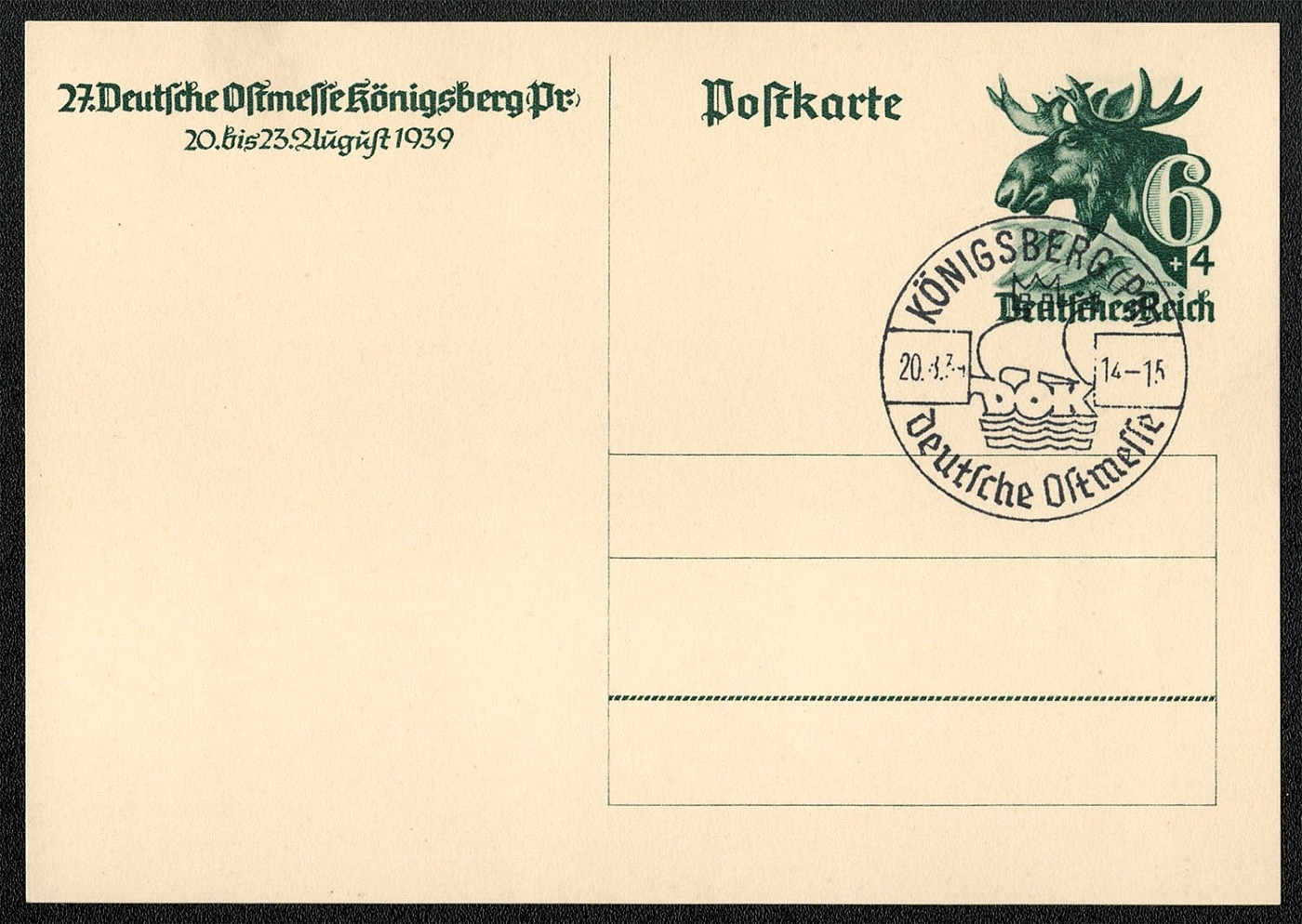
1939 Michel P 280 issued for the 27lh Annual German Eastfair with Special postmark
Michel P 280 issued for the 27lh Annual German Eastfair with a favor cancellation using the commemorative postmark. Dated Konigsberg, 20 August 1939.
Unsold
947
-
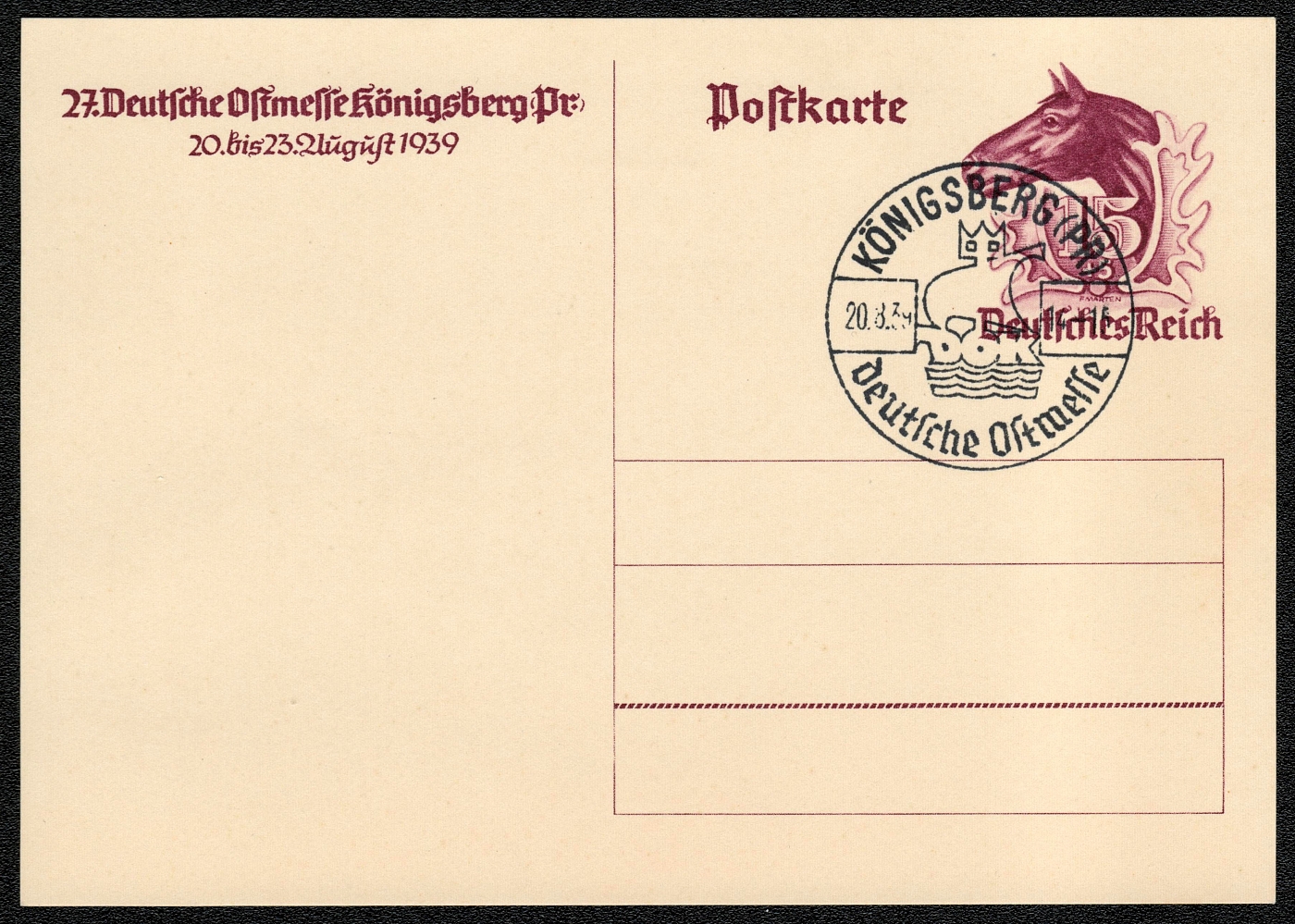
1939 Michel P 281 issued for the 27lh Annual German Eastfair with Special postmark for the philatelic exhibition
Commemorative postal card (Michel P 281) issued for the 27lh Annual German Eastfair held in Konigsberg (East Prussia), 20 through 23 August 1939. The imprinted stamp is of a horse’s head (Pferdekopf). Designed by Professor F. Marten of Konigsberg. Issued 8 August 1939. A favor cancellation of the special postmark prepared for the philatelic exhibition held in conjunction with the Eastfair.
Unsold
948
-
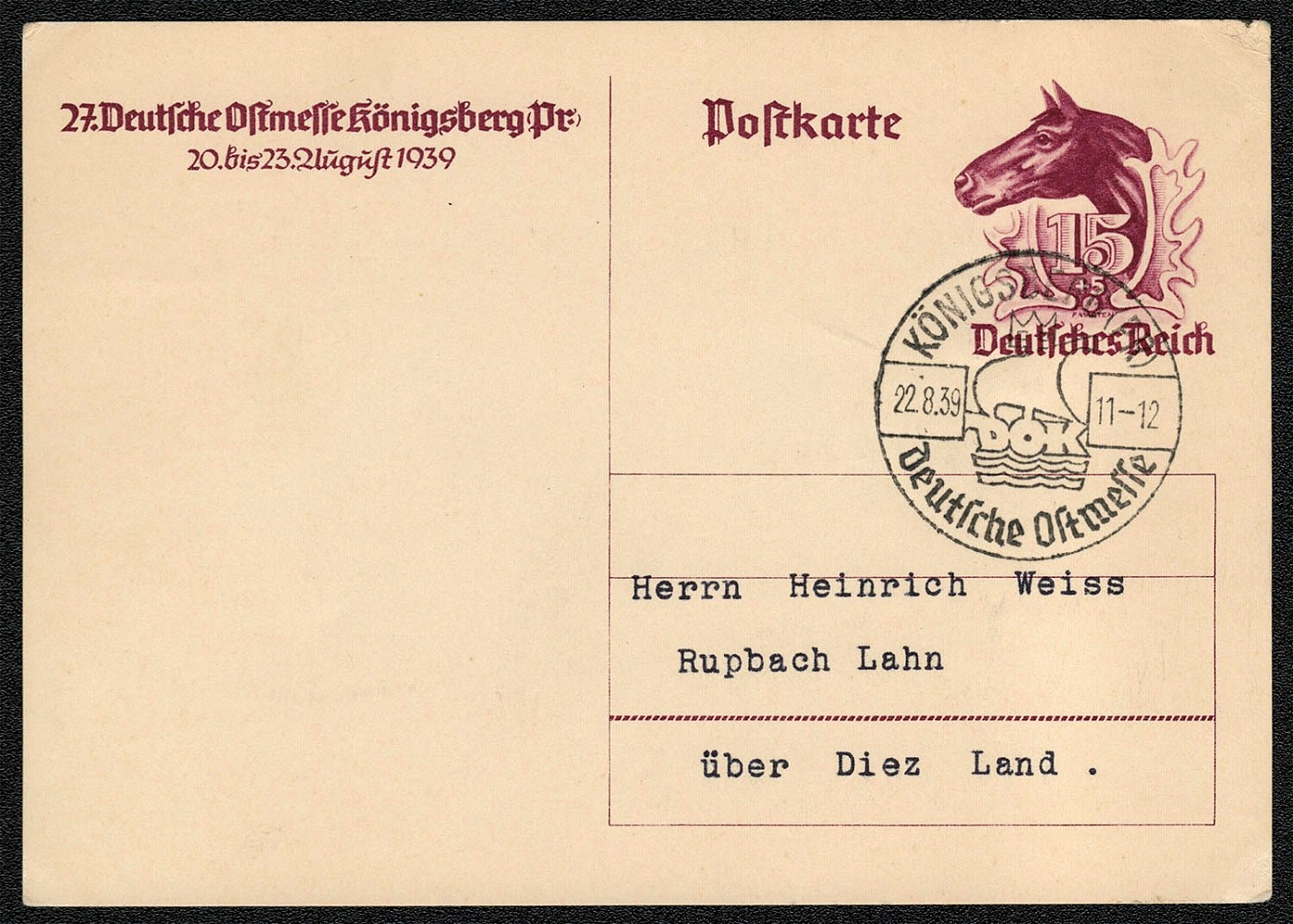
1939 Michel P 281 postally used issued for the 27lh Annual German Eastfair with Special postmark for the philatelic exhibition
A postally used Eastfair commemorative postal card with the special postmark dated 22 August 1939.
Unsold
949
$25
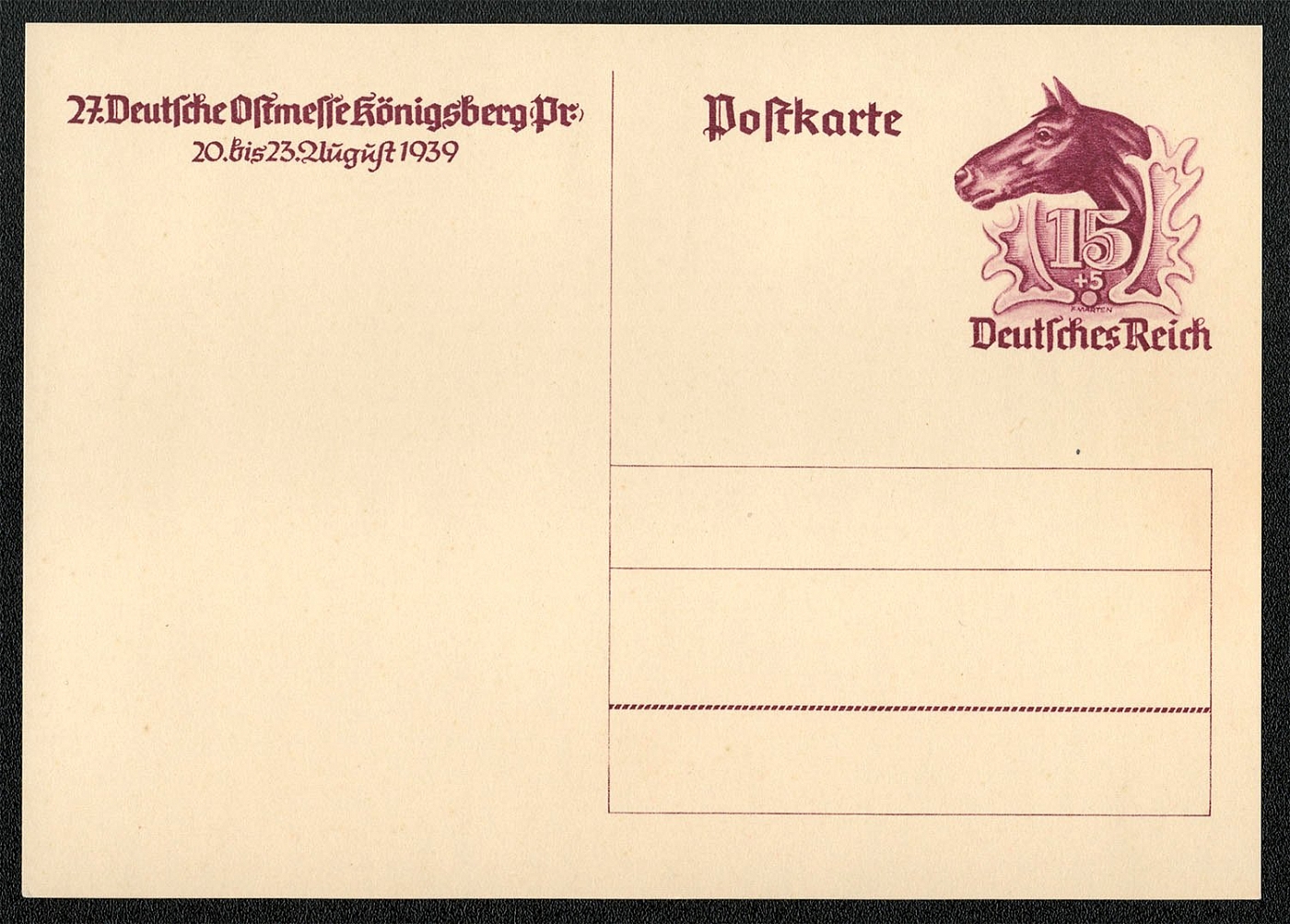
1939 Commemorative postal card (Michel P 281) issued for the 27lh Annual German Eastfair held in Konigsberg
Commemorative postal card (Michel P 281) issued for the 27lh Annual German Eastfair held in Konigsberg (East Prussia), 20 through 23 August 1939. The imprinted stamp is of a horse’s head (Pferdekopf).
Sold for:
$25
950
$5
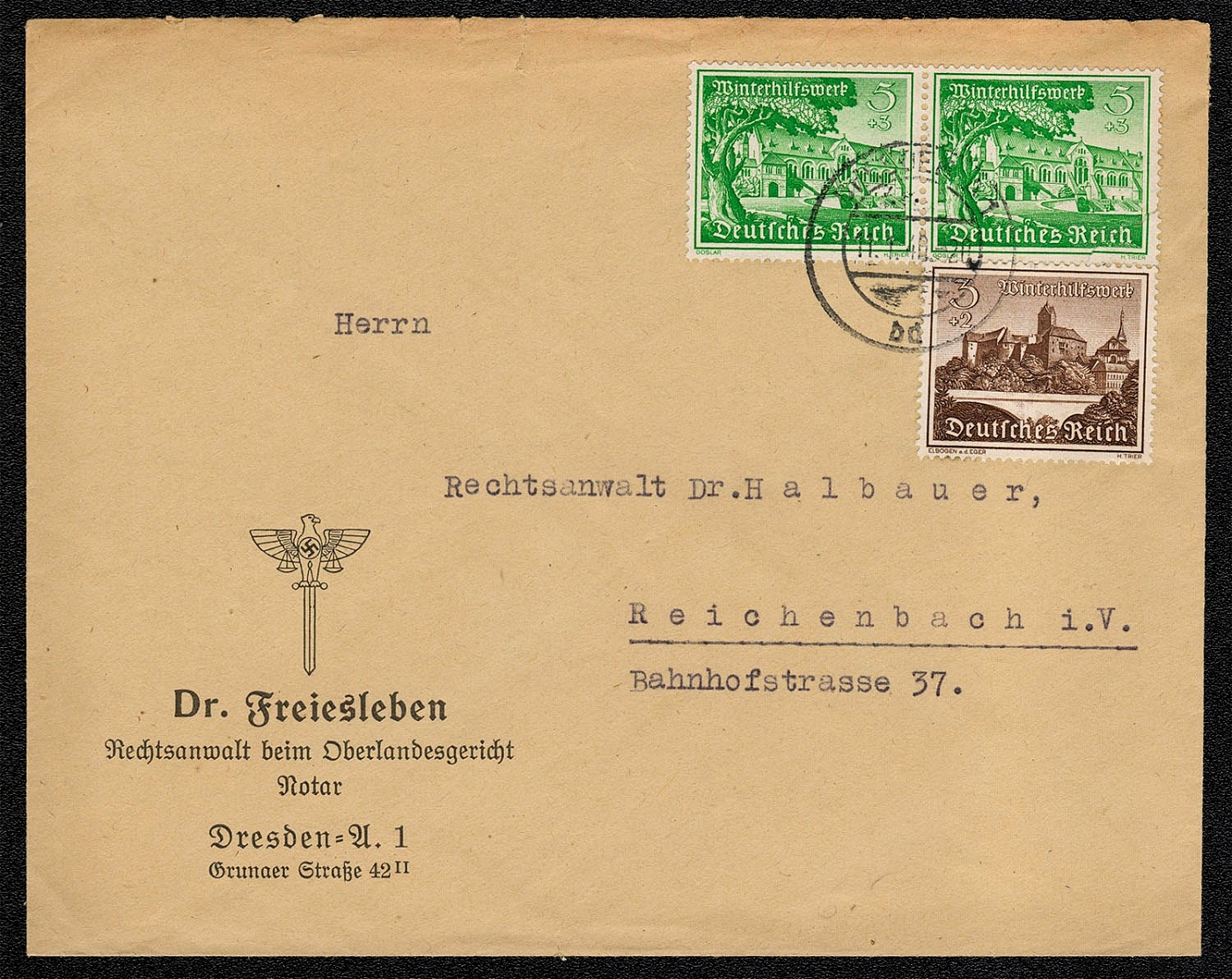
1940 Postally used cover franked with Sc B160 and B162.
Philatelically prepared, but postally used cover franked with Sc B160 and B162. Postmarked: Dresden 11 January 1940. The cover was sent from the offices of Dr. Freisleban, a lawyer and notary with the Dresden Regional Court of Appeal. It was addressed to another lawyer, one Dr. Halbauer in Reichenbach, a town approximately 90 miles southwest of Dresden.
Sold for:
$5
951
$5
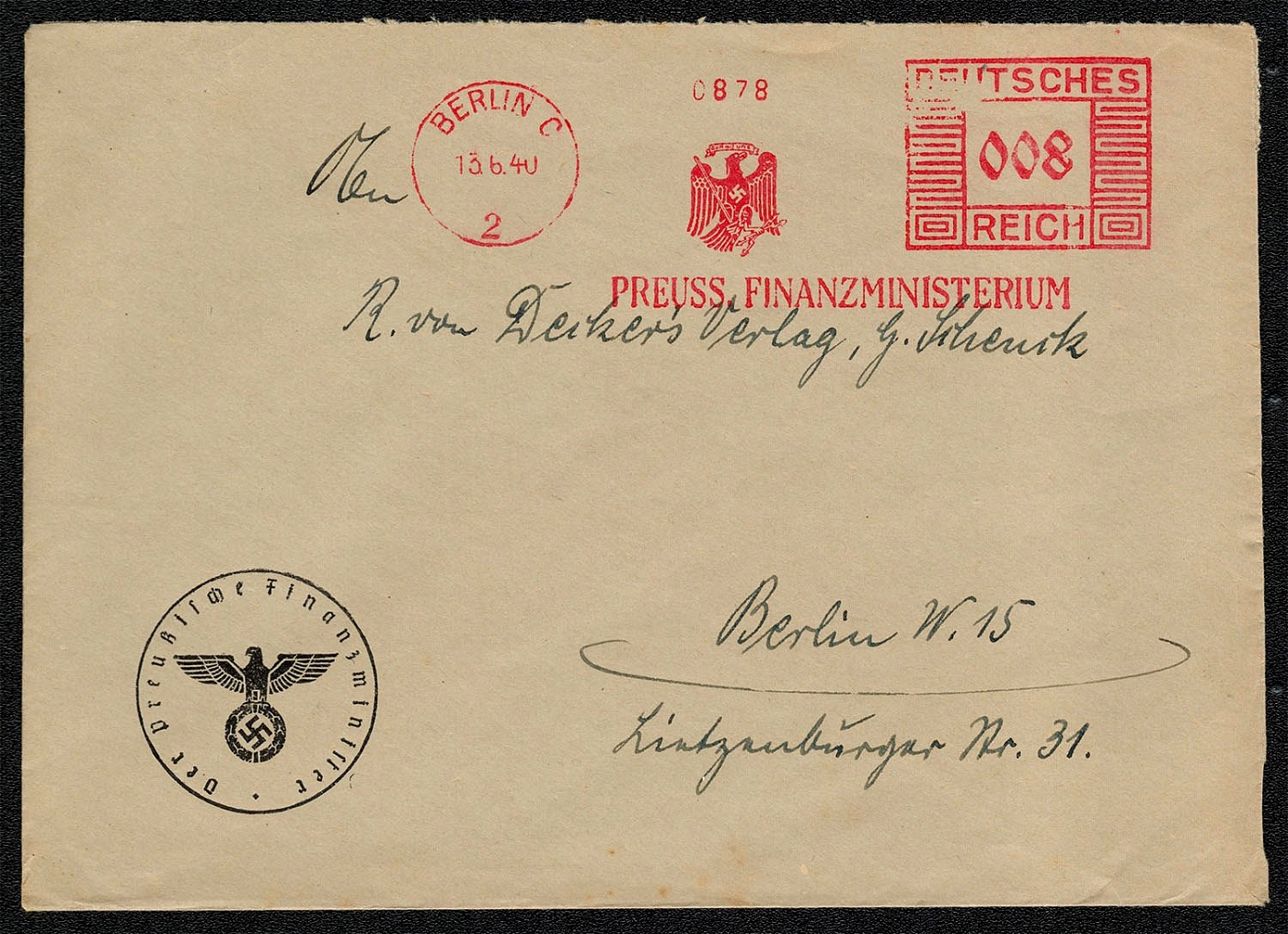
1940 Official Prussian Finance Ministry cover franked with an 8 Rpf postage meter stamp
Official Prussian Finance Ministry cover franked with an 8 Rpf postage meter stamp. Mailed on 13 June 1940 from Berlin Charlottenburg 2 to Berlin W.15. The banner carried in the beak of the Reichsadler is emblazoned “Gott mit Uns” (God with us).
Sold for:
$5
952
-
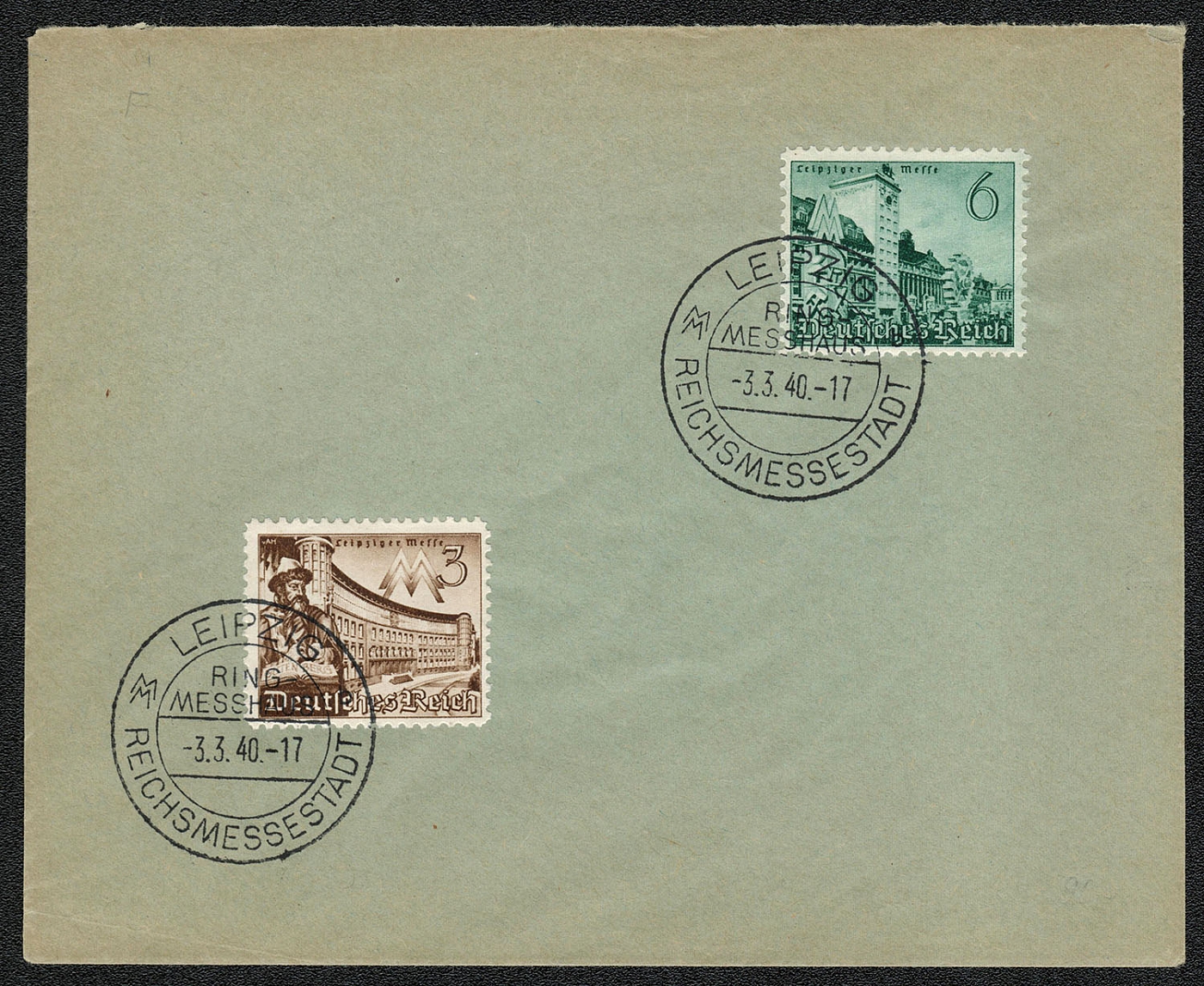
1940 Souvenir cover with Special Postmark Leipzig
1940 Souvenir cover with Special Postmark Leipzig
Unsold
953
-
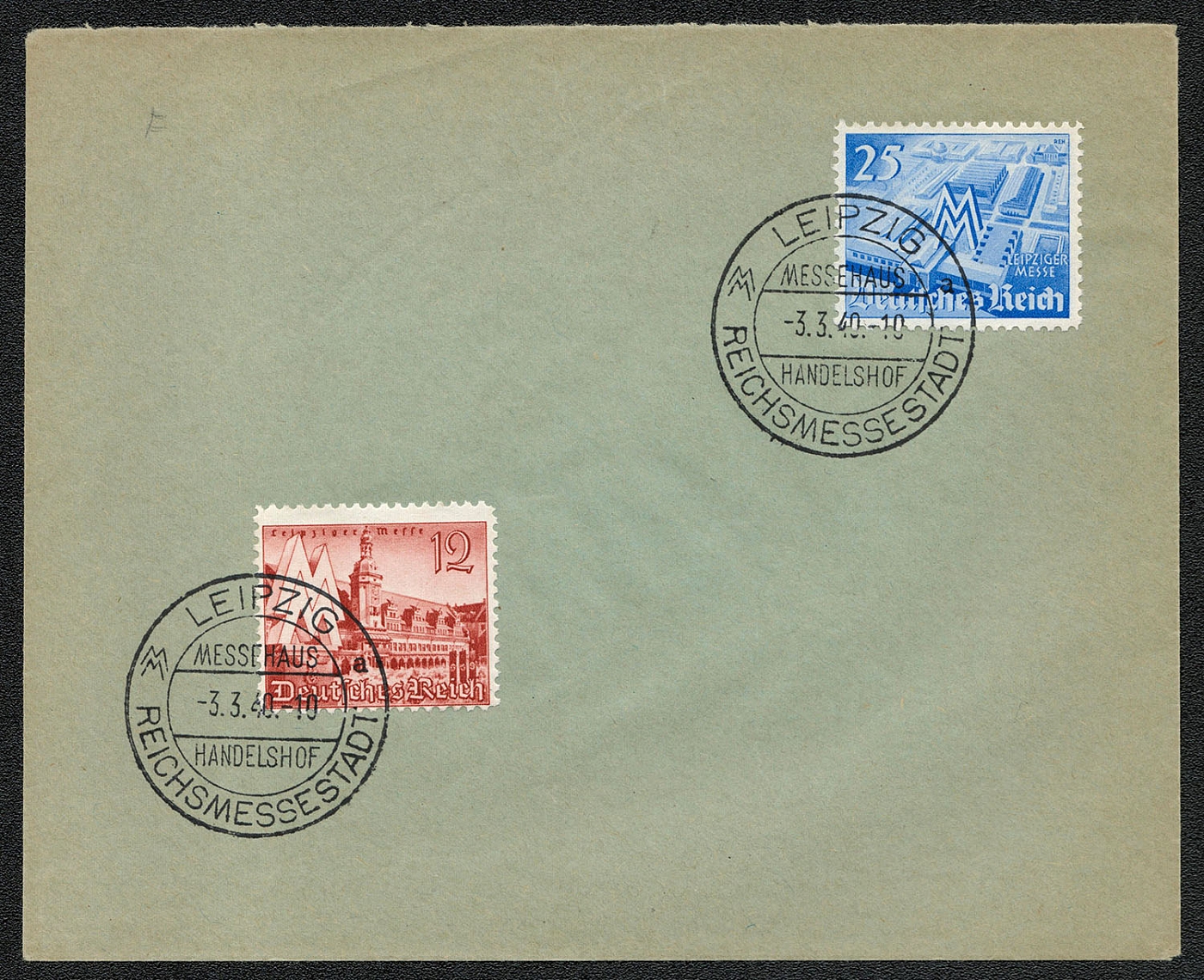
1940 Souvenir cover with Special Postmark Leipzig (2)
1940 Souvenir cover with Special Postmark Leipzig
Unsold
954
-
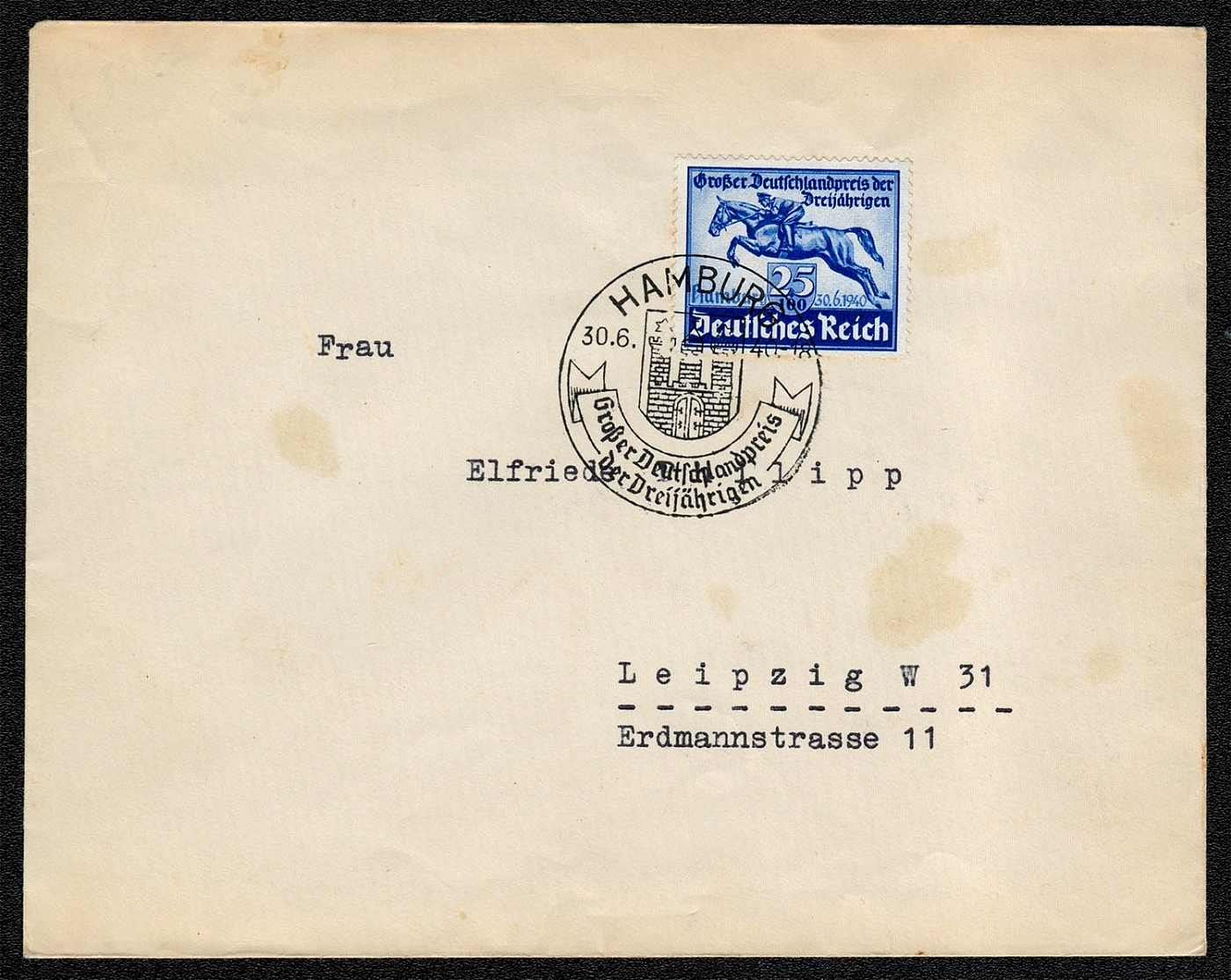
1940 Postally used cover dated 30 June
Postally used cover dated 30 June 1940. The postmark depicts the arms of Hamburg, and translates: Greater Germany Prize for Three-Year-Olds. It was used on 23, 26. 28, and 30 June 1940. The Grosser Deutschlandpreis for three-year-old horses was held from the 23rd through the 3O'hand the race was run the last day of the event. It was won by Schwarzols (Black Oil), and ridden by G. Streit.
Unsold
955
-
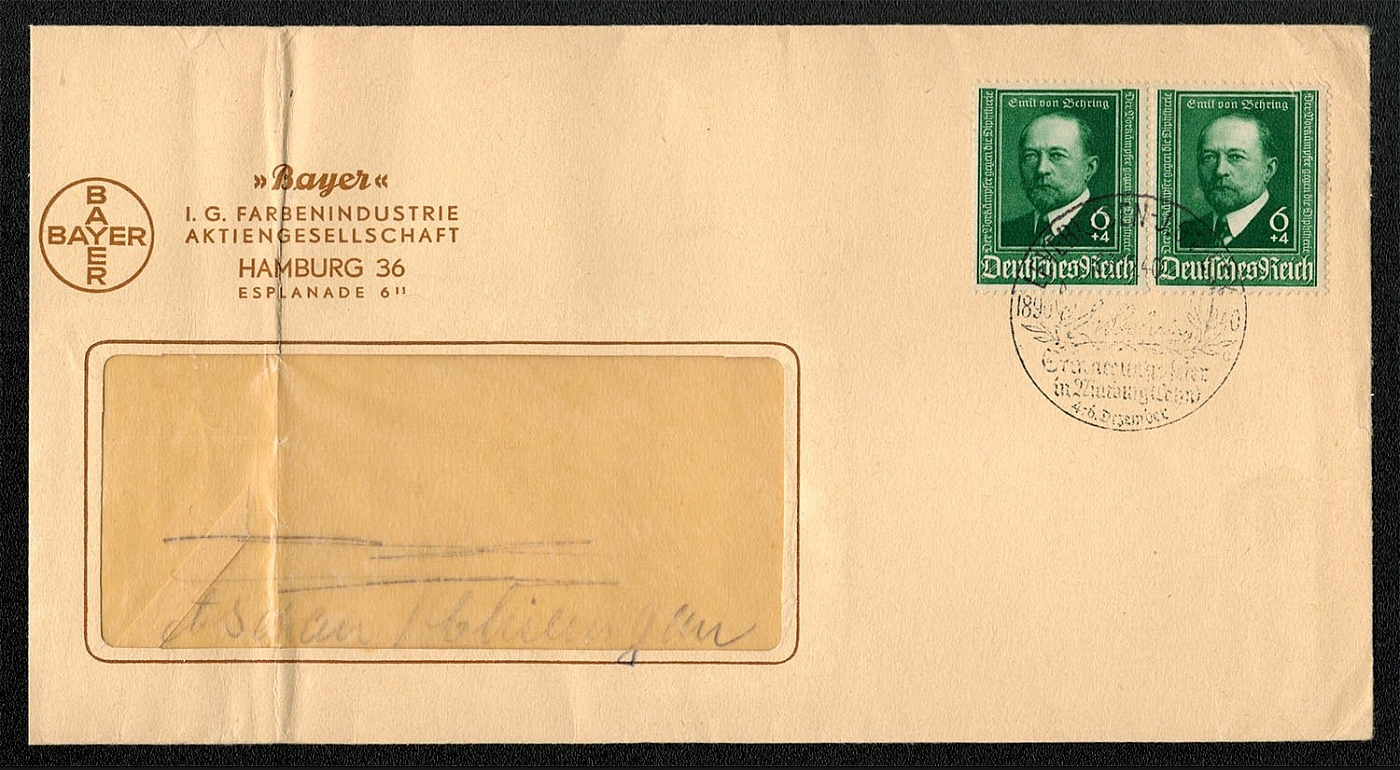
"1940 cover franked with a pair of Scott В186 commemorating the 50""' anniversary of Emil Behring's discovery of a serum for diphtheria"
"Commercial cover franked with a pair of Scott В186 commemorating the 50""' anniversary of Emil Behring's discovery of a serum for diphtheria. The special postmark was used at Leverkusen, and reads “Commemoration Festival in Marburg.” It was in Marburg that the diphtheria antitoxin was first produced for commercial use. The postmark has a facsimile of Behring’s signature, and was used from 4 to 6 December 1940. Bayer AG, the German chemical and pharmaceutical company, was founded in 1863 by a chemical salesman, Friedrich Bayer (1825-80). It now operates plants in Germany and more than thirty other countries. Company headquarters have been in Leverkusen, north of Koln, since 1912. Bayer was in the I. G. Farben chemical industry cartel until it was dissolved by the Allies in 1945. The company’s trademark, the Bayer cross, is internationally famous. Bayer was the first developer and marketer of aspirin (1899). of the first sulfa drug Prontosil (1935). and of polyurethane (1937), the base material for synthetic foams, paints, adhesives, fibers, and other goods. Bayer also developed heroin in 1898, but discarded it after learning of its addictive properties."
Unsold
Lot Number
Price
956
$5
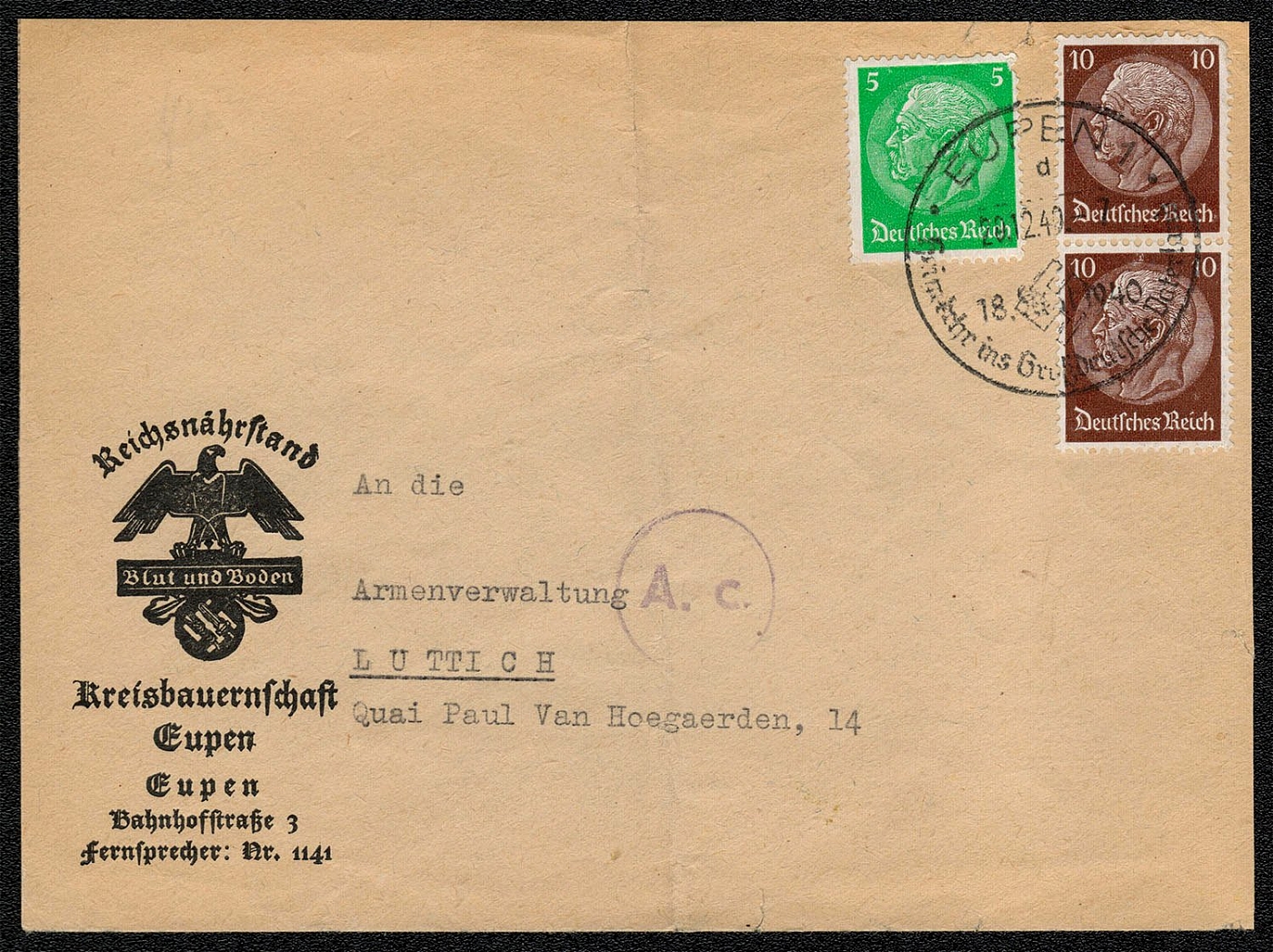
1940 Cover with illustrated corner card from the Reichsniihrstand (Reich Food Estate) Kreisbauernshaft Eupen
Cover with illustrated corner card from the Reichsniihrstand (Reich Food Estate) Kreisbauernshaft Eupen. It was posted 20 December 1940 in Postamt Eupen 1. Franked with Scott 418 and 421 and cancelled with the sonderstempeh (Eupen Returned Home to the Greater German Fatherland on 18 May 1940.) in the logo translates as Blood and Soil. The Reichsniihrstand was a monopoly agricultural organization established by law in 1933. It included all persons and businesses involved in the cultivation, processing, and marketing of farm products. Membership was obligatory. The administrative head was Reich Peasant Fiihrer and Agriculture Minister Walther Darre. Beneath him, in a strictly hierarchical structure, were the State (Land), District (Kreis), and local peasant unions (Bauernschaften).
Sold for:
$5
957
$6
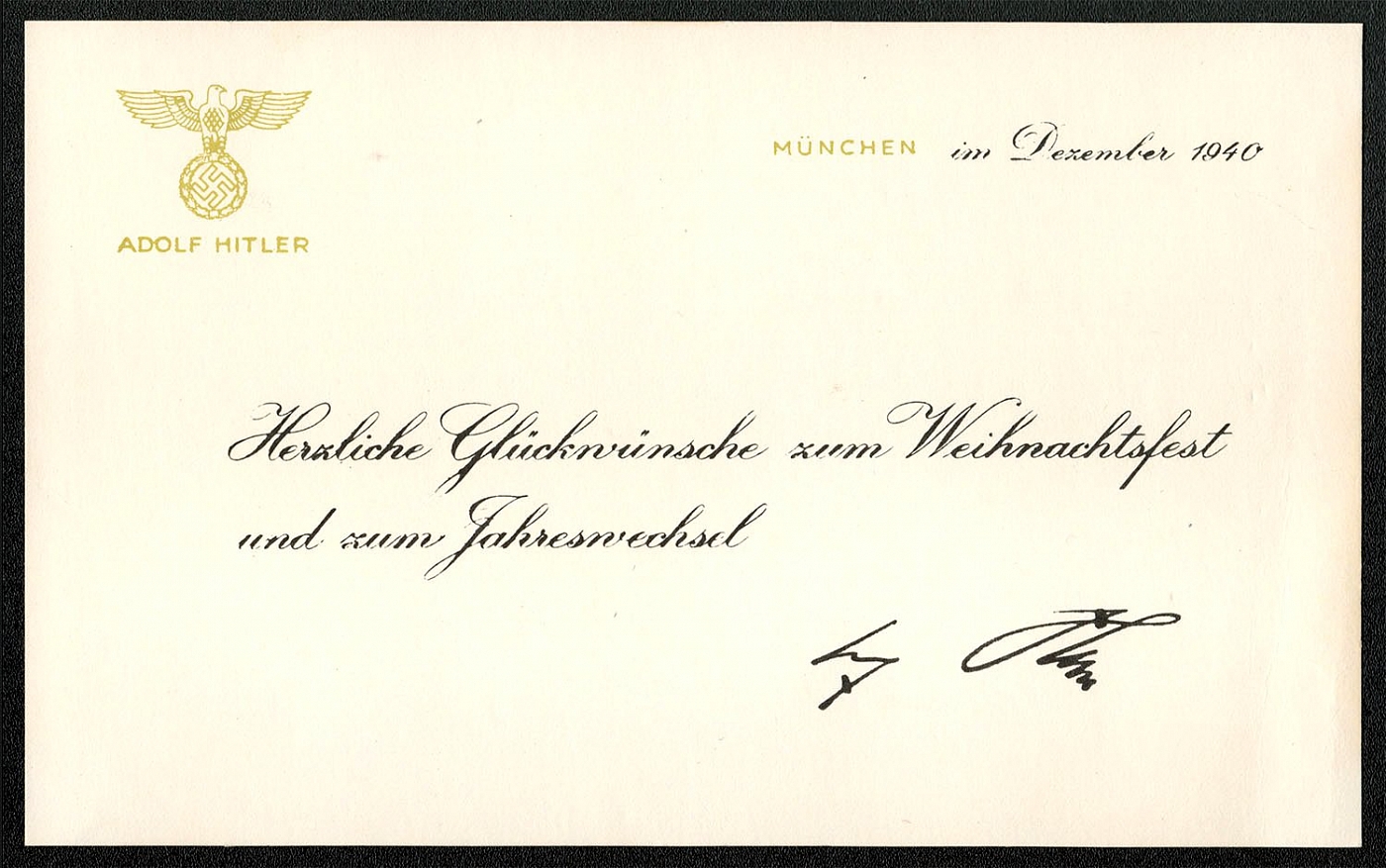
1940 Greetings card with facsimile signature sent to persons of importance
Munchen, Dezember 1940 Hearty Wishes for a Merry Christmas and a Happy New Year from Adolf Hitler Greetings card with facsimile signature sent to persons of importance.
Sold for:
$6
958
$5
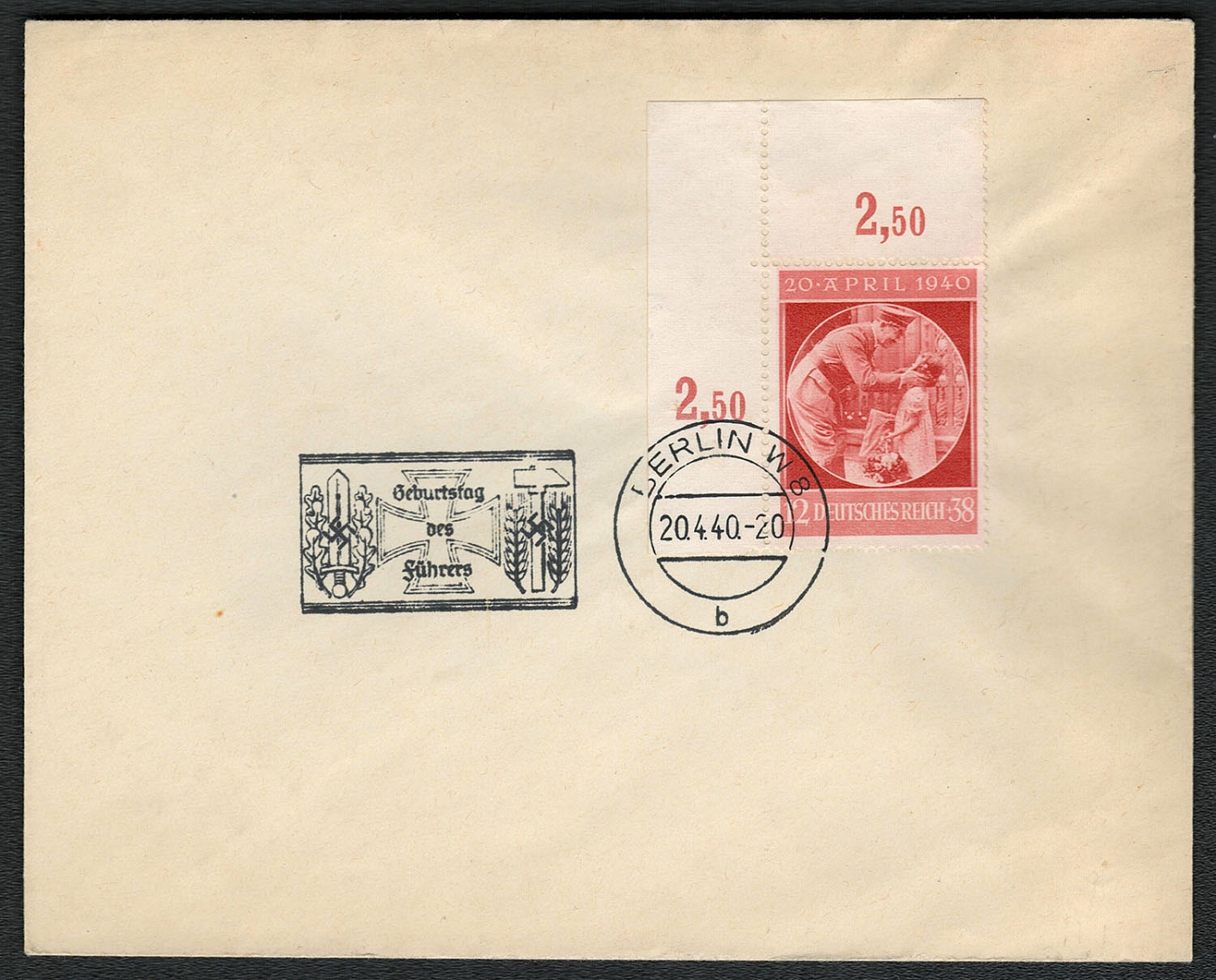
1940 special postmark depicts the sword of war, and the hammer and ear of corn (industry and agriculture)
The special postmark depicts the sword of war, and the hammer and ear of corn (industry and agriculture), the home front. For the first time, Hitler’s birthday and the town name were not shown in the design. The cancel was used on 20 April 1940 in Berlin, Danzig, Hamburg, Koln, Munchen, Nurnberg, Posen, and Wien.
Sold for:
$5
959
-
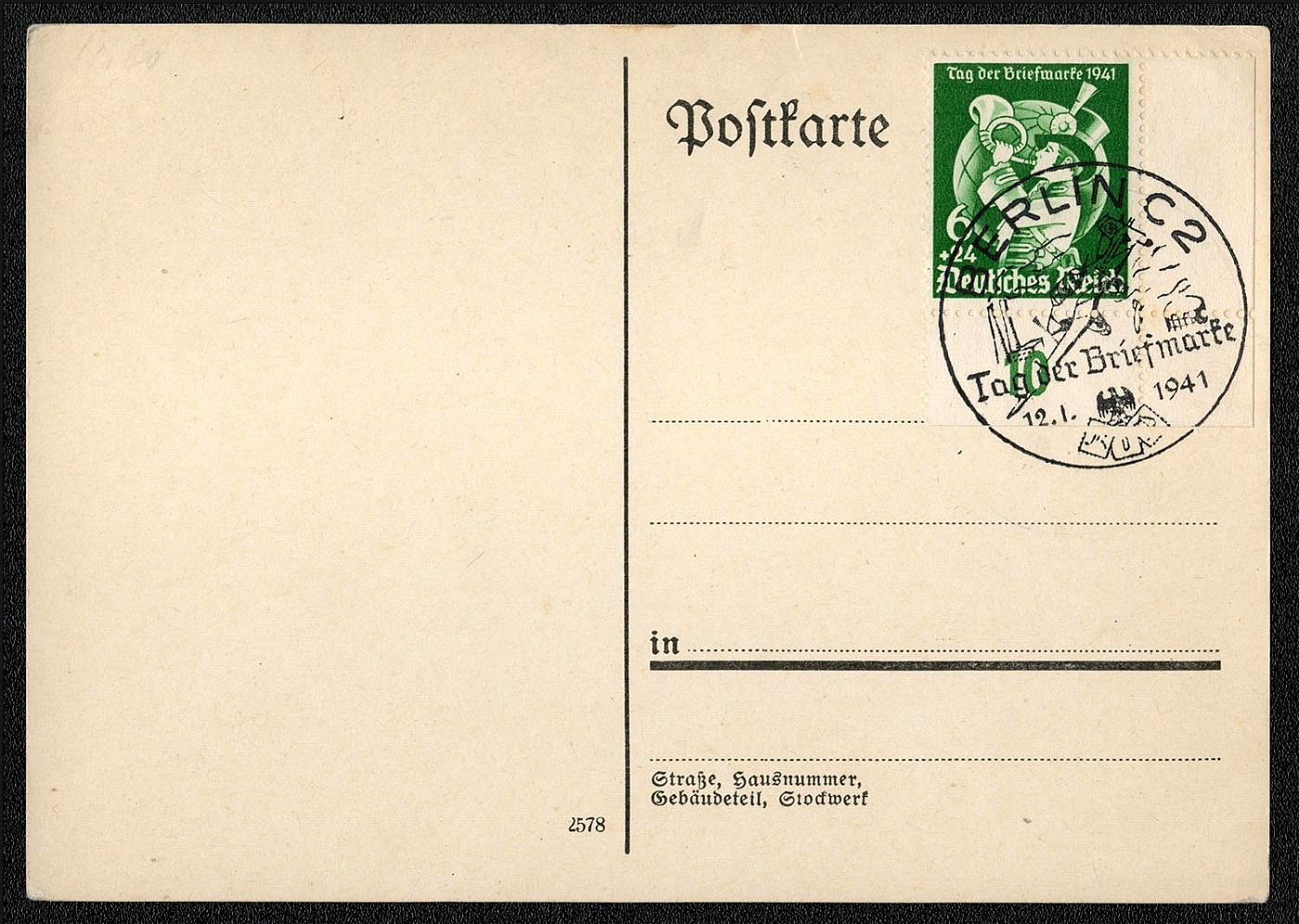
1941 The Day of the Stamp postcard
(Postilion blowing horn) The Day of the Stamp had been celebrated in nations belonging to the Federation of Philately since 7 January 1936. Although Germany had previously issued postcards and postmarks, 1941 was the first year a special stamp was issued. Ten variants of the special postmark for the 1941 Day of the Stamp, all with a war motif, were used in various towns between 10 and 14 January 1941. Berlin, and 16 other towns used a design depicting Stuka dive bombers.
Unsold
960
-
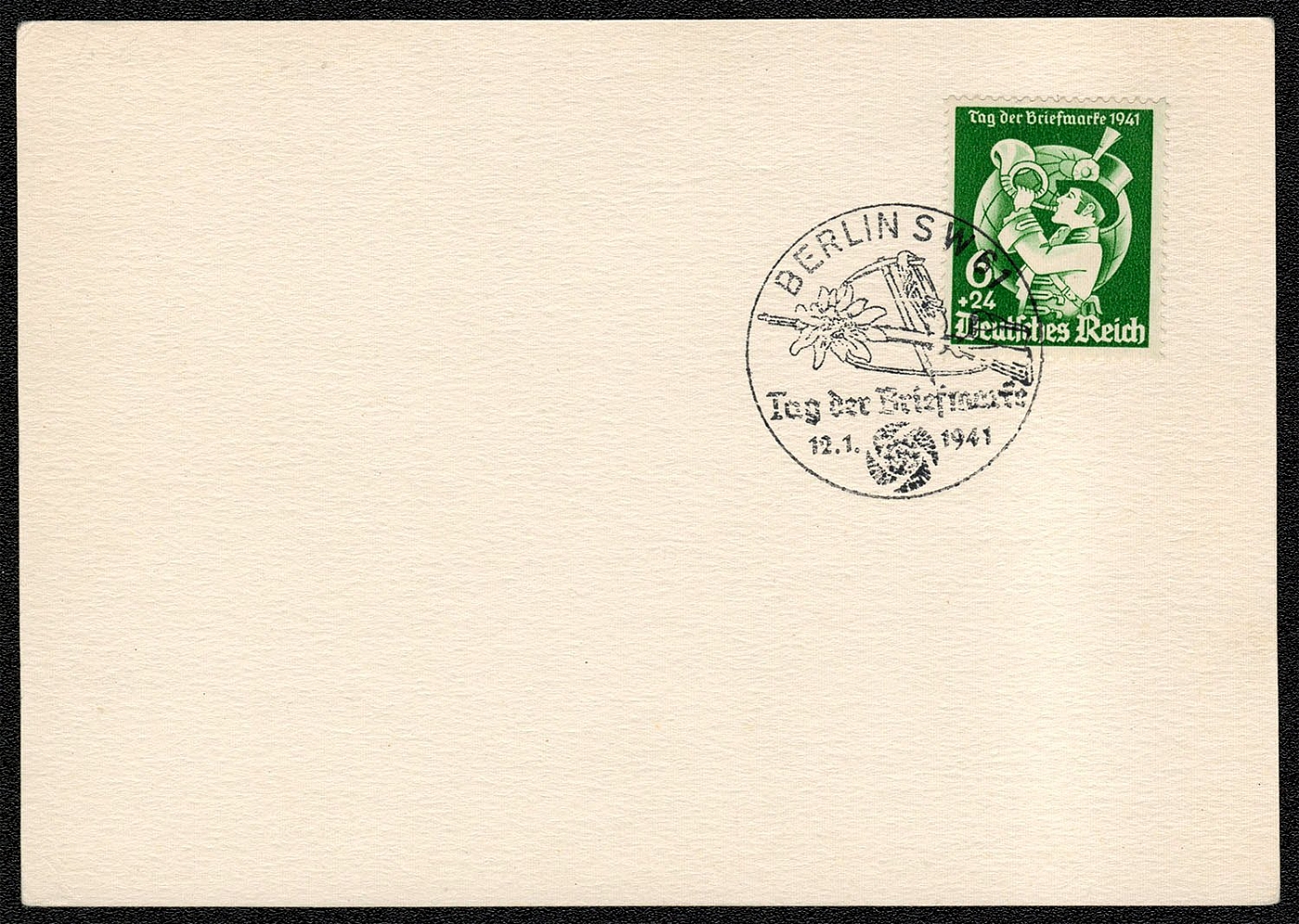
1941 Unaddressed post card with The Day of the Stamp issue and Special postmark
Unaddressed post card with The Day of the Stamp issue and a “favor cancellation.” Ten variants of the special postmark for the 1941 Day of the Stamp, all with a war motif, were used in various postal districts of many major cities and towns between 10 and 14 January 1941. Berlin’s Southwest Postal District (SW 61) and 15 towns used this design depicting an edelweiss, pickax and rifle.
Unsold
961
-
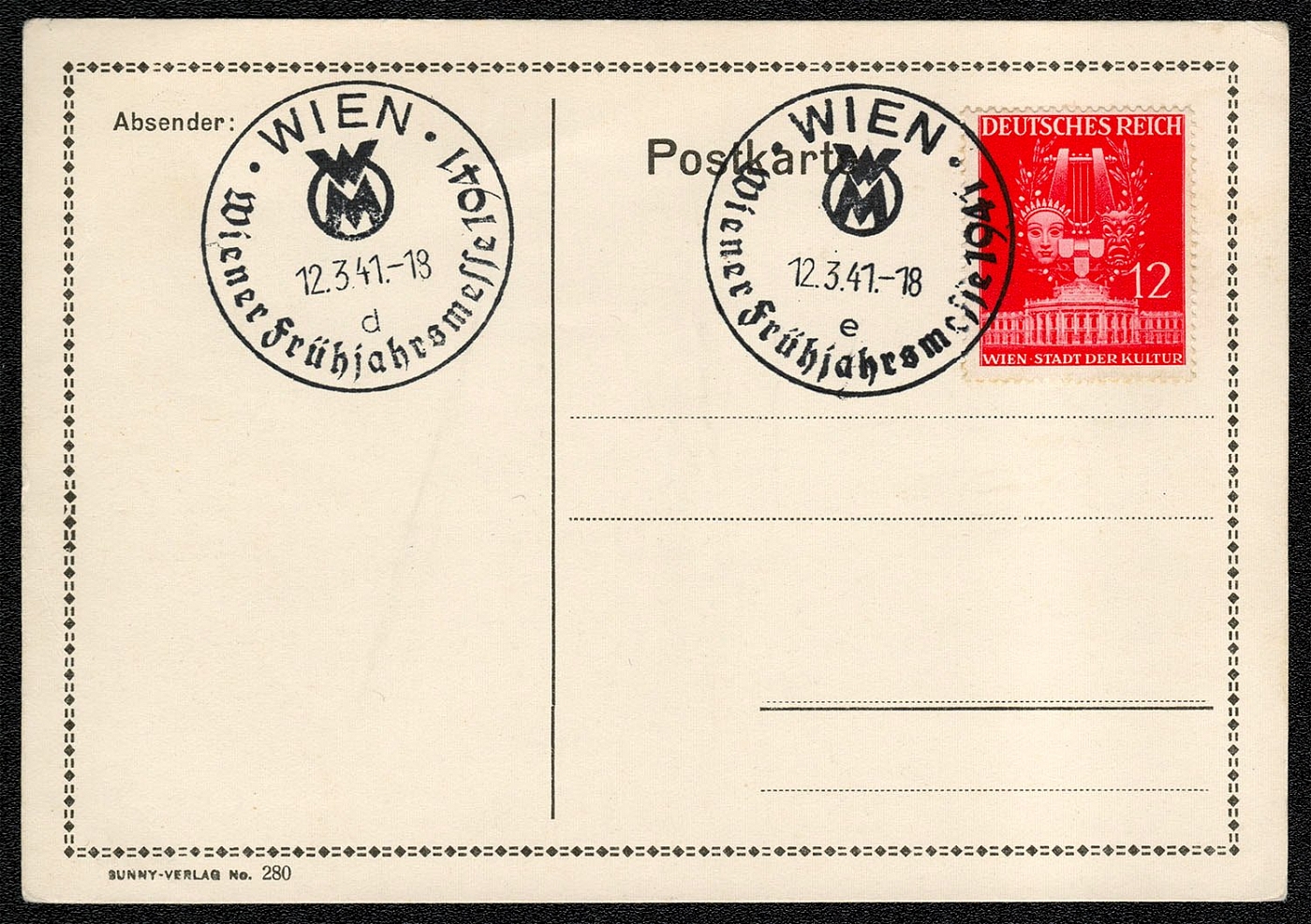
962
-
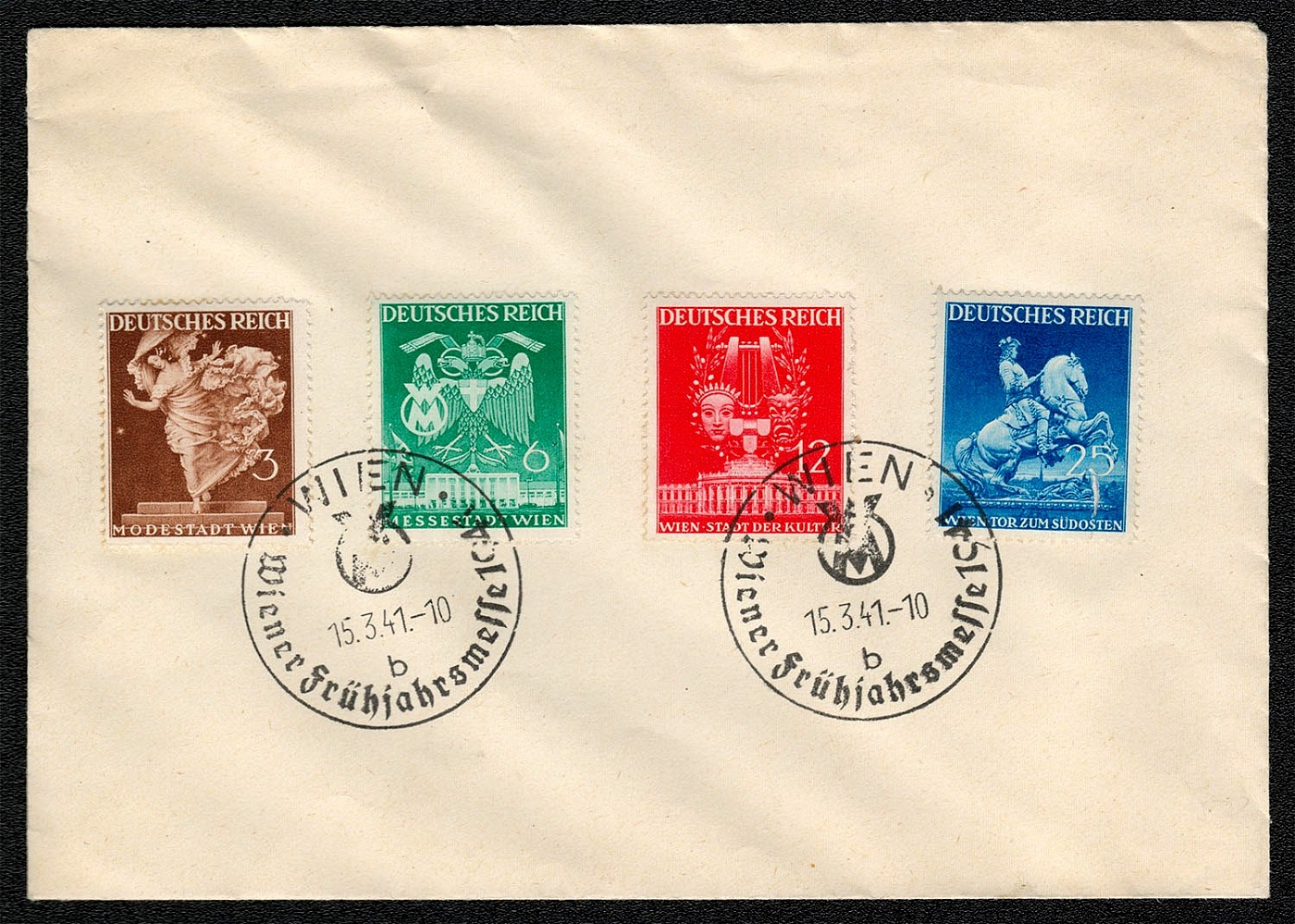
963
$5
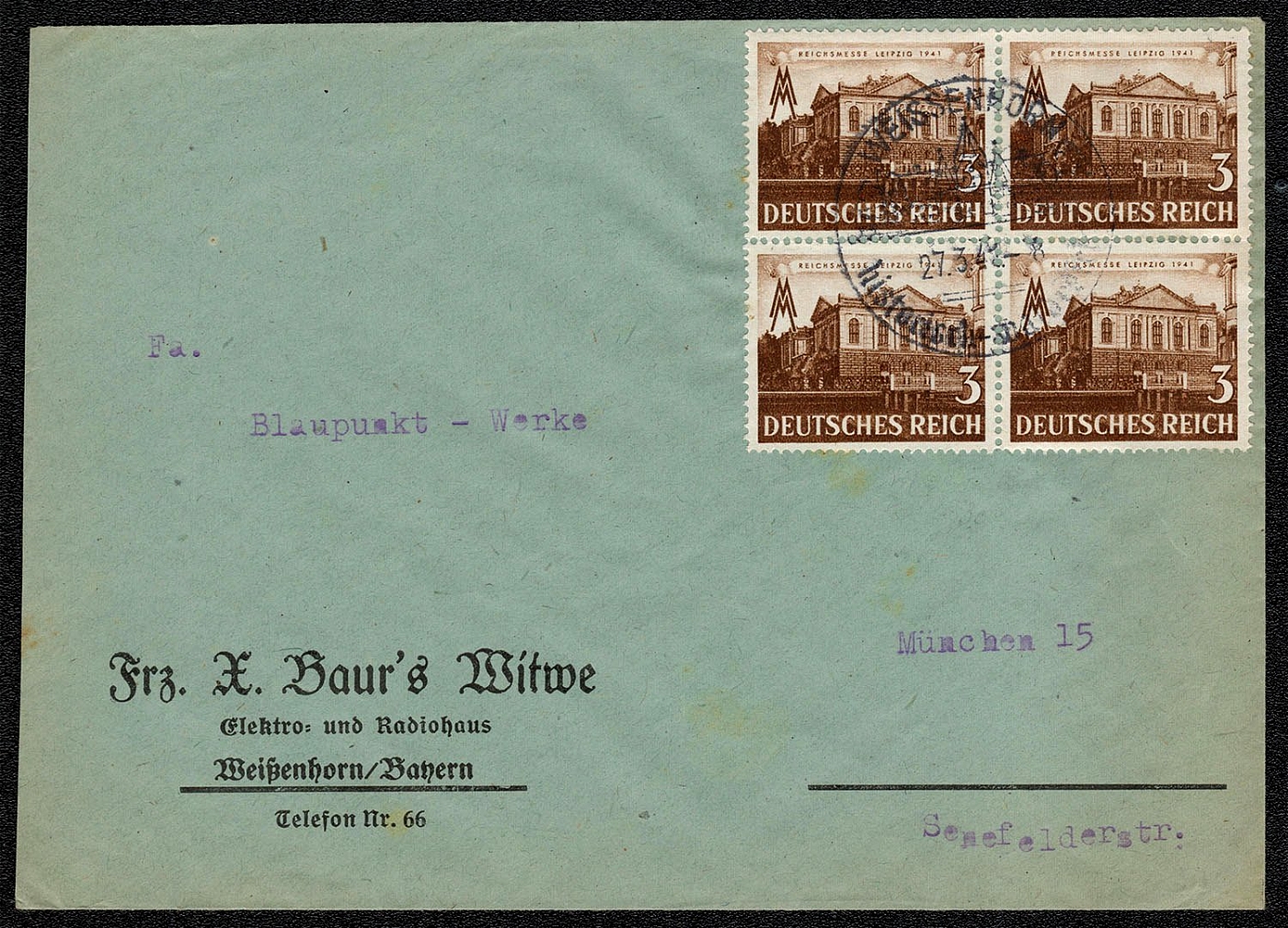
1941 Postally used commercial cover franked with a block of four of Sc 498
Postally used commercial cover franked with a block of four of Sc 498 (Issued 1 March 1941) mailed from Weissenhorn/Bayern to the Blaupunkt Werke in Munchen on 27 March 1941. The sender, Frz. X. Baur’s Widow, operated an electronics and radio shop, and was corresponding with Blaupunkt, a major German manufacturer of radios still in business today. The publicity cancellation, although indistinct, promotes the small Bavarian village in the “historical national forest” (Schwarzwald) and depicts the entrance to the local castle
Sold for:
$5
964
$5
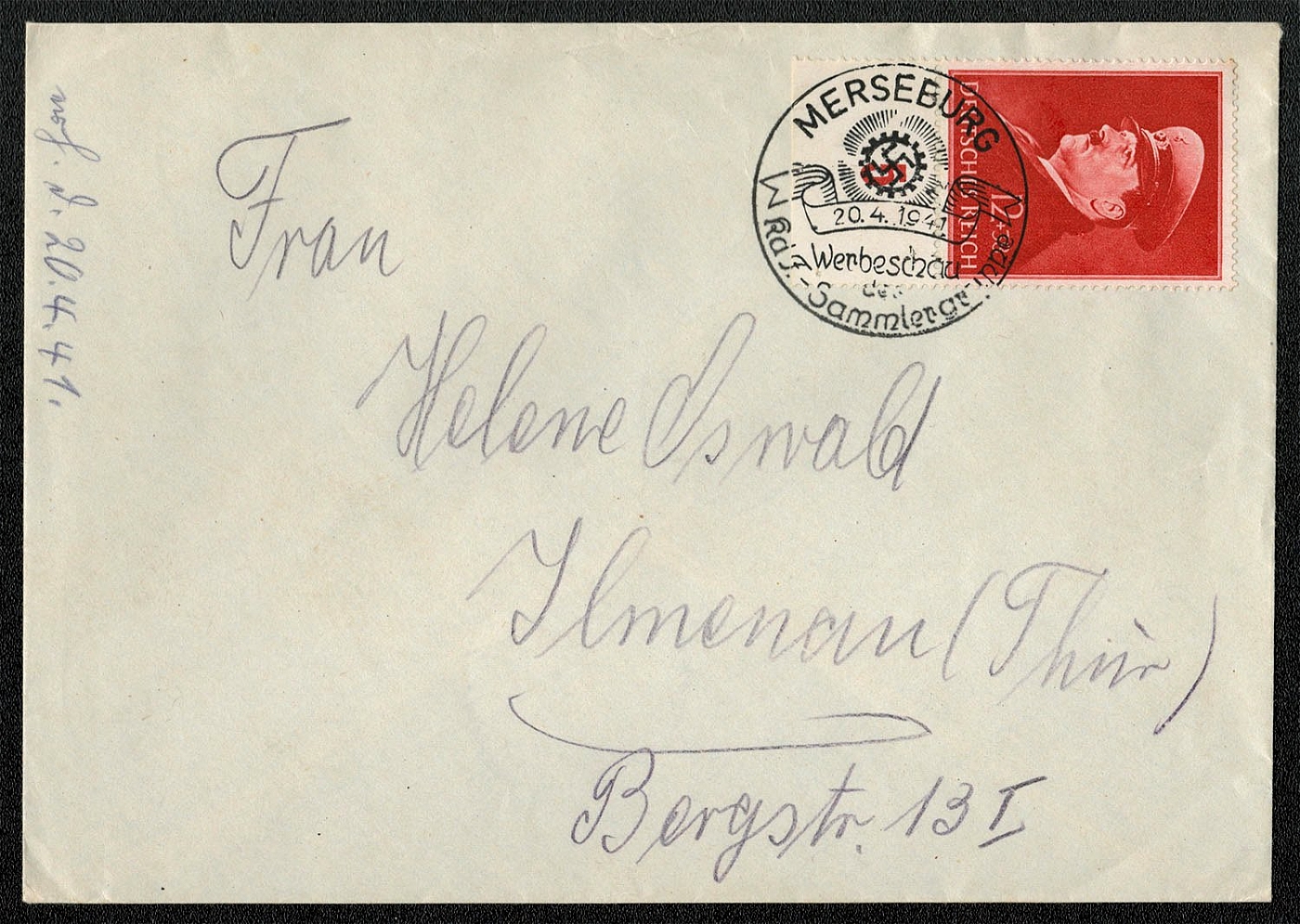
1941 Merseburg Postally used cover with publicity cancellation dated 20 April
Philatelically prepared, but postally used cover with publicity cancellation dated 20 April 1941. Sponsored by the KdF Stamp Collectors Club of Merseburg where the special postmark was used. Merseburg, at an elevation of 325 ft., is an ancient town on the River Saale, mentioned in history as early as the 9lh century. Its population in 1941 was approximately 30,000. The Schloss, built in 1480-89 and rebuilt early in the 17lh century, once a residence of the Saxon princes, presents an imposing appearance.
Sold for:
$5
965
-
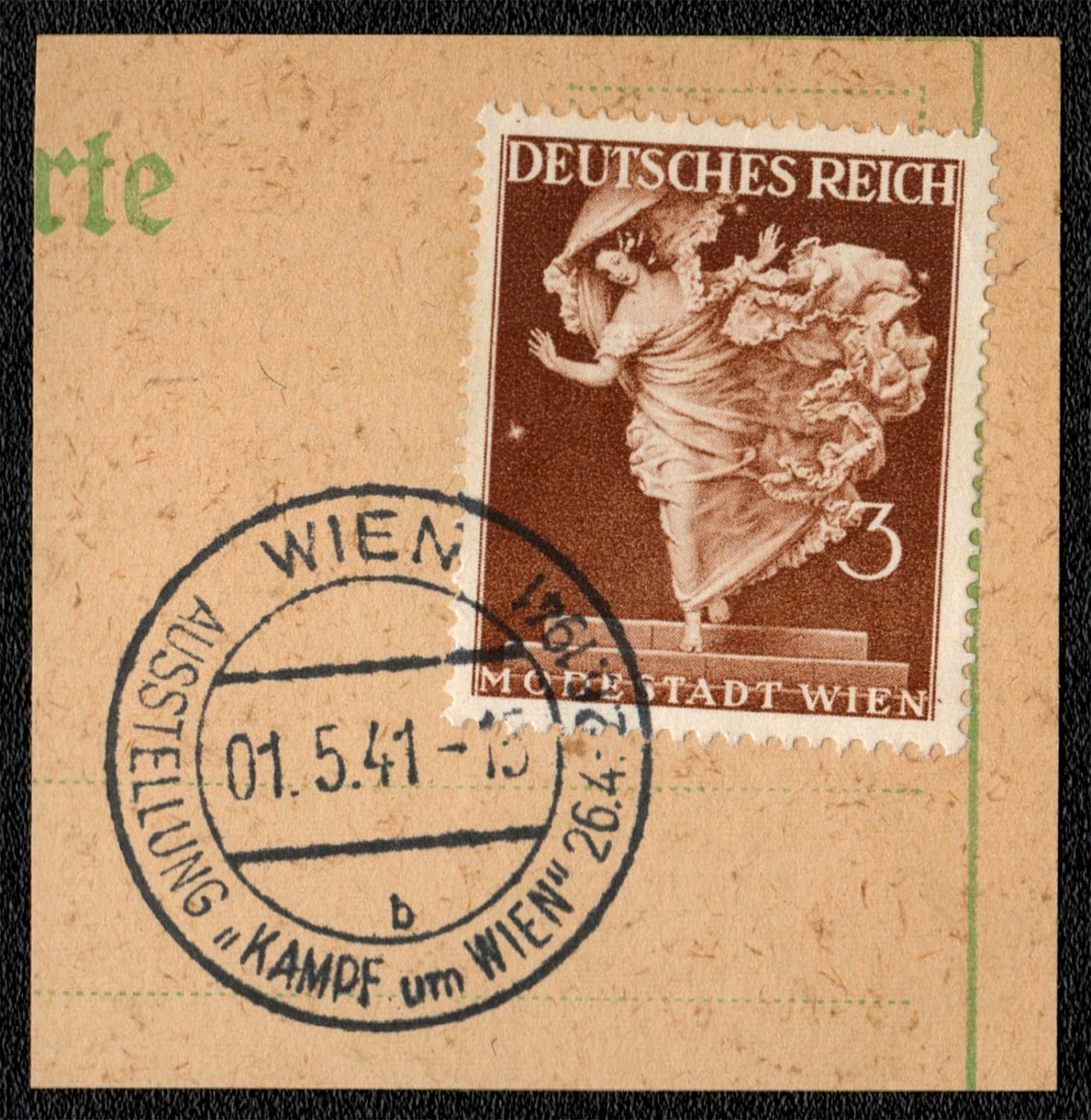
1941 The “Battle for Wien” Exhibition
The “Battle for Wien” Exhibition 26 April - 2 June 1941 The exhibition commemorated the 1938 annexation of Austria. The cancellation is dated 1 May 1941.
Unsold
966
$5
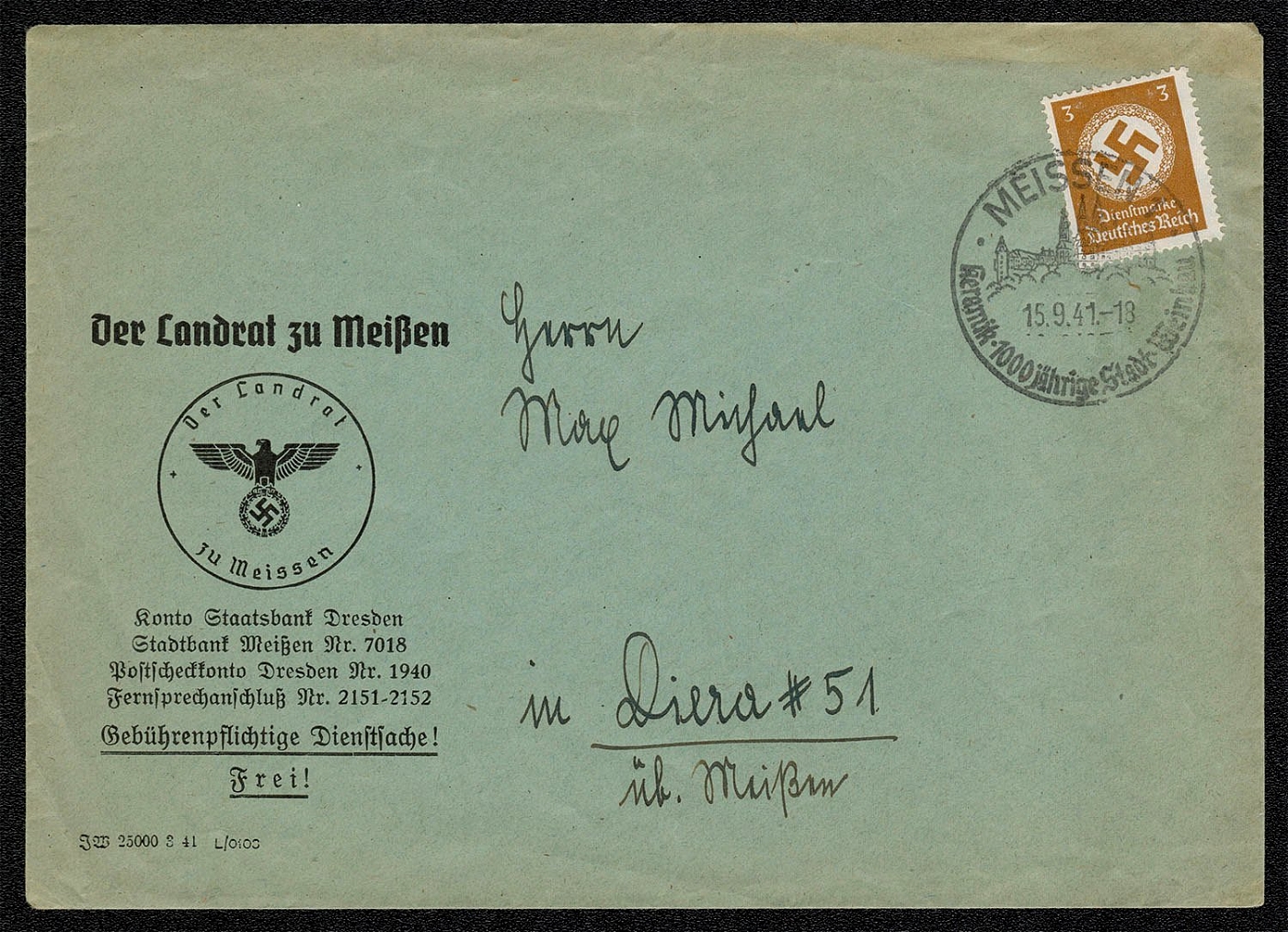
1941 Official mailing franked with Scott 080 from District Magistrate of Meissen on 15 Septembe
The Official Stamp Issue of 18 January 1934 Official mailing franked with Scott 080 from District Magistrate of Meissen on 15 September 1941. The commemorative cancellation advises that Meissen celebrates both a 1000 year ceramic and viniculture heritage. The corner card is primarily the street address, post office box, and telephone number of the official sender, but: Postage Required Official Matter! Free!
Sold for:
$5
967
-
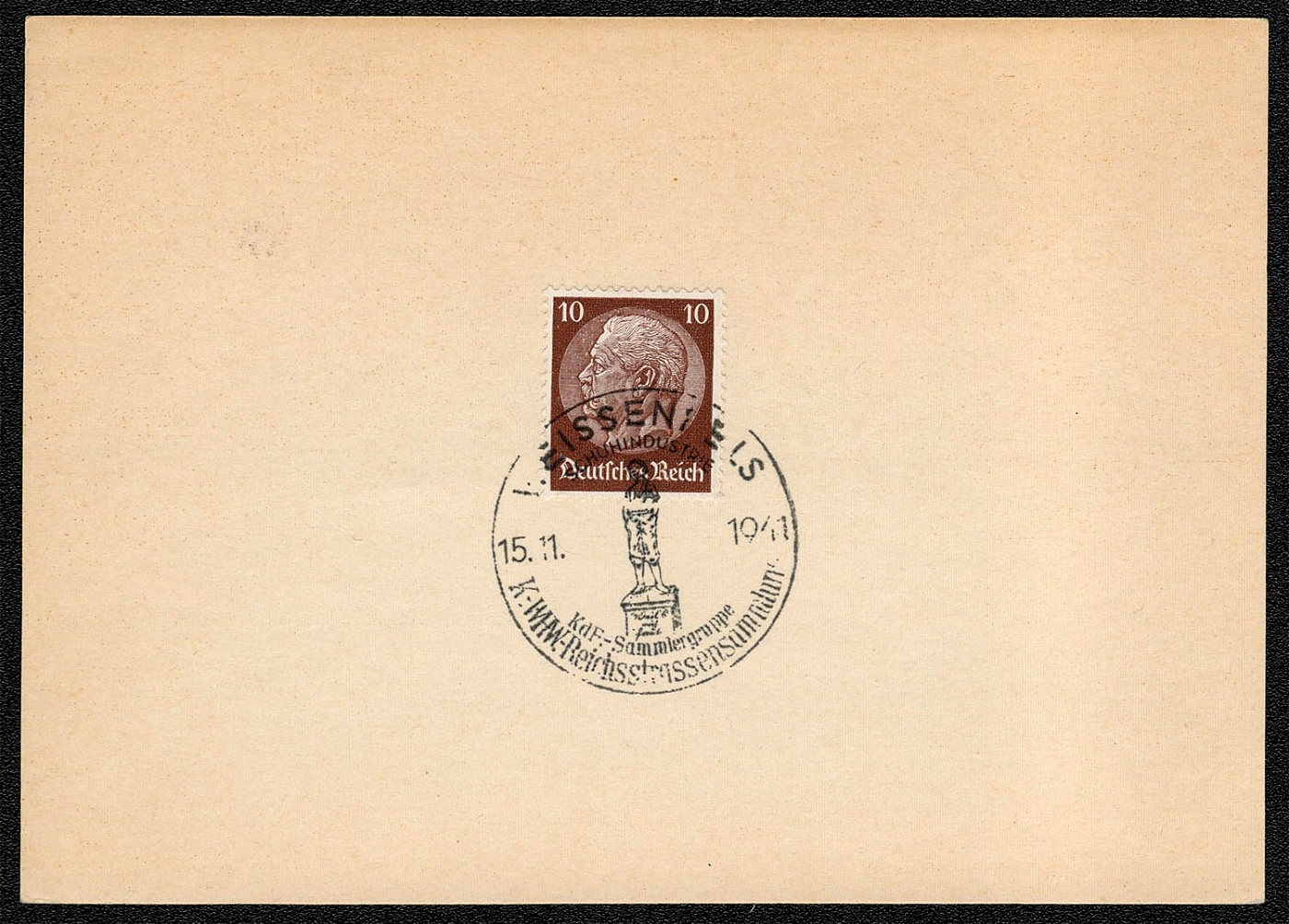
1941 Informal souvenir card from the Weissenfels
Informal souvenir card from the Weissenfels Strength Through Joy Collectors Group 15 November 1941. Weissenfels, on the River Saale about 20 miles southwest of Leipzig, was a town of 42,000 in 1941, long noted for the manufacture of footwear.
Unsold
968
-
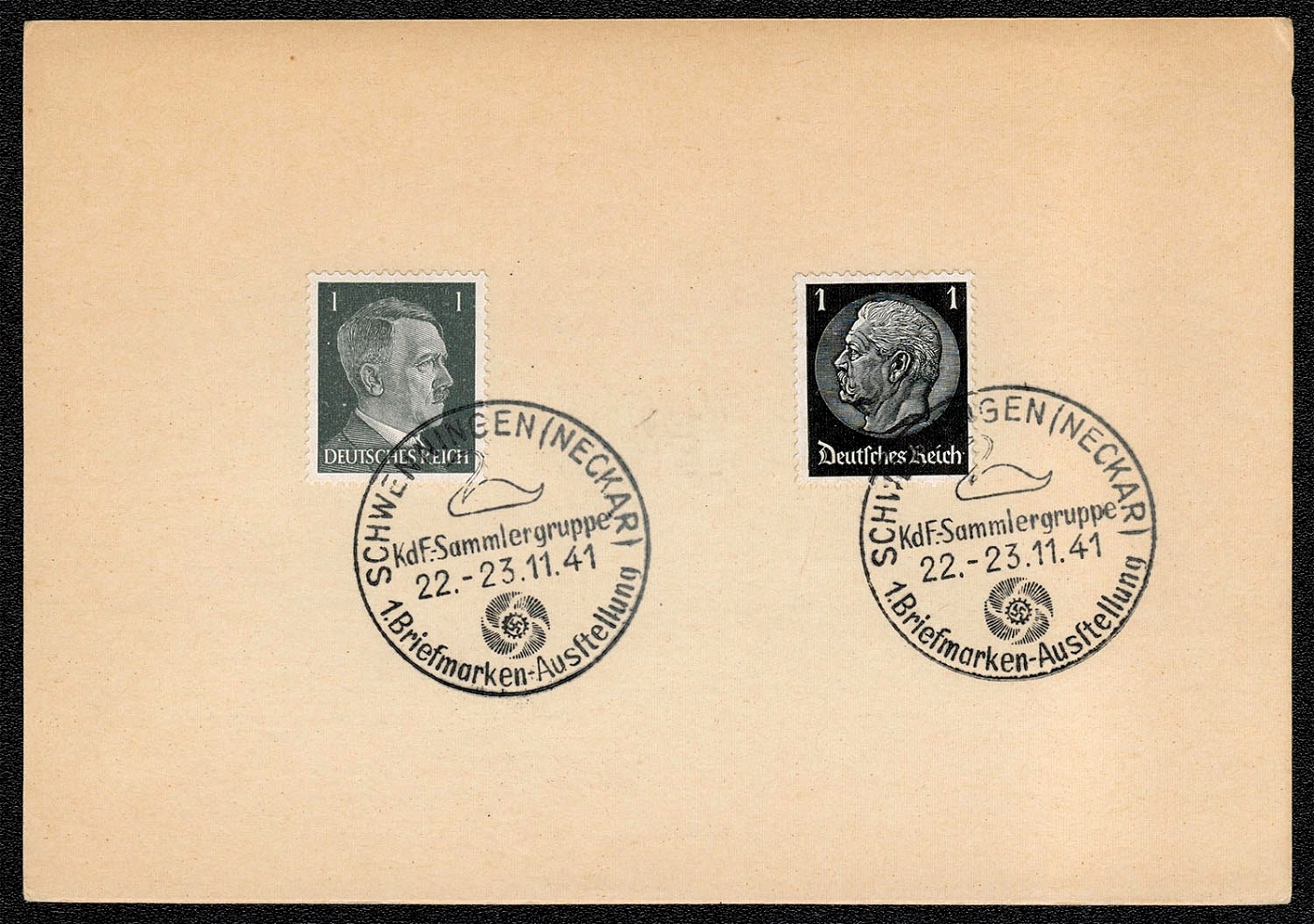
1941 Informal souvenir card from the First Stamp Publicity Exhibition of the Schwenningen (Neckar
Informal souvenir card from the First Stamp Publicity Exhibition of the Schwenningen (Neckar) Strength Through Joy Collectors Group 22 - 23 November 1941. Schwenningen, on the River Neckar in the Swabian Alps, was a town of 22,000 in 1941. It continues to be noted for its clock factories and technical school for skilled mechanics.
Unsold
969
-
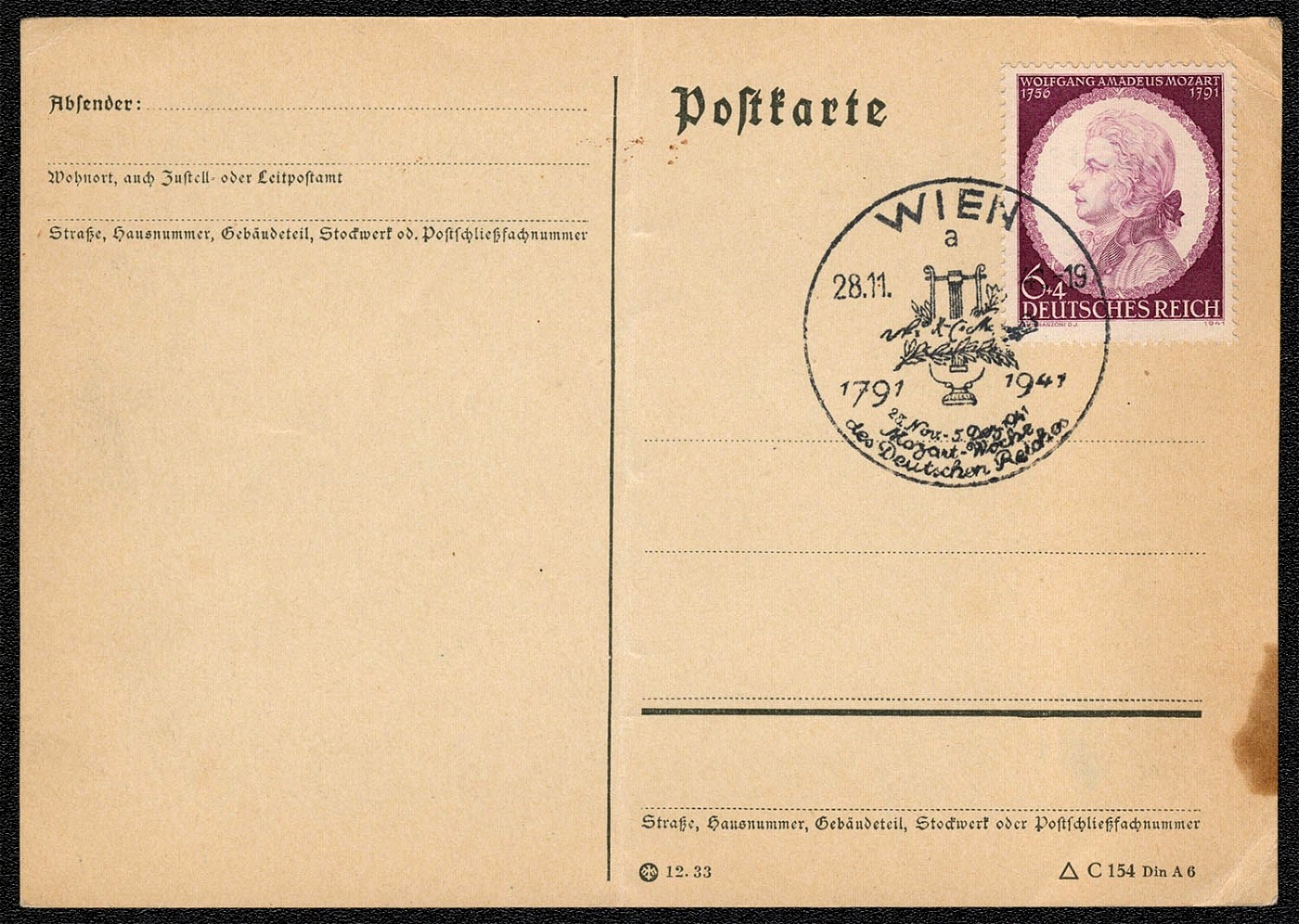
1941 The 15ffh Anniversary of the Death of Mozart first day of usage for the Mozart issue
Post card with Gefalligkeitsstempel (favor cancellation) dated 28 November 1941, the Ersttag, or first day of usage for the Mozart issue.
Unsold
970
$5
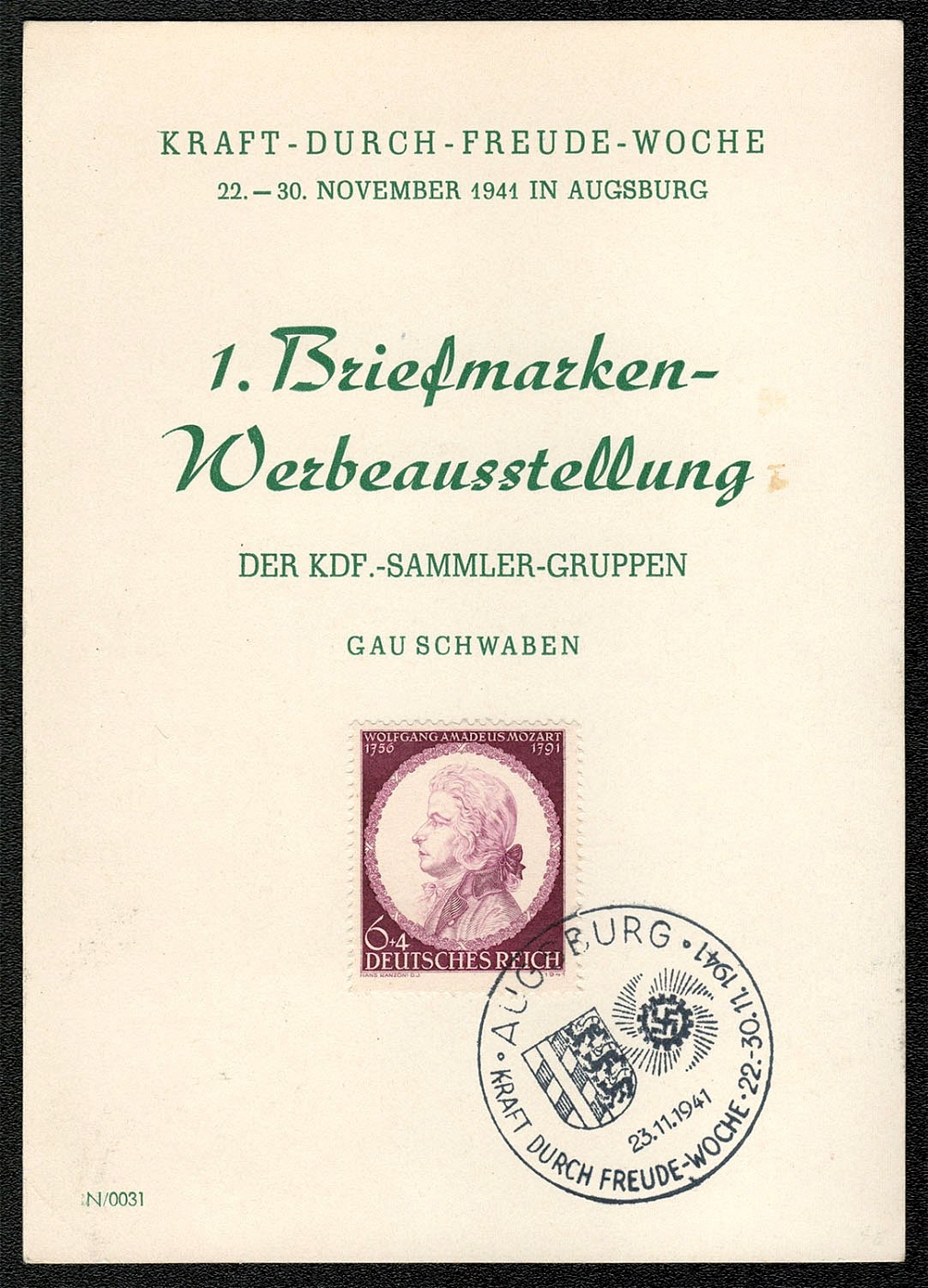
1941 Souvenir card from the First Stamp Publicity Exhibition of the Strength Through Joy Collectors Group of Gau Swaben
Souvenir card from the First Stamp Publicity Exhibition of the Strength Through Joy Collectors Group of Gau Swaben. It was held during Strength Through Joy Week, 22 - 30 November 1941 in Augsburg. The Mozart stamp affixed to the card was issued 28 November although the commemorative cancel is dated 23 November. It is most likely that the dateline in the handstamp was simply not changed.
Sold for:
$5
971
$6
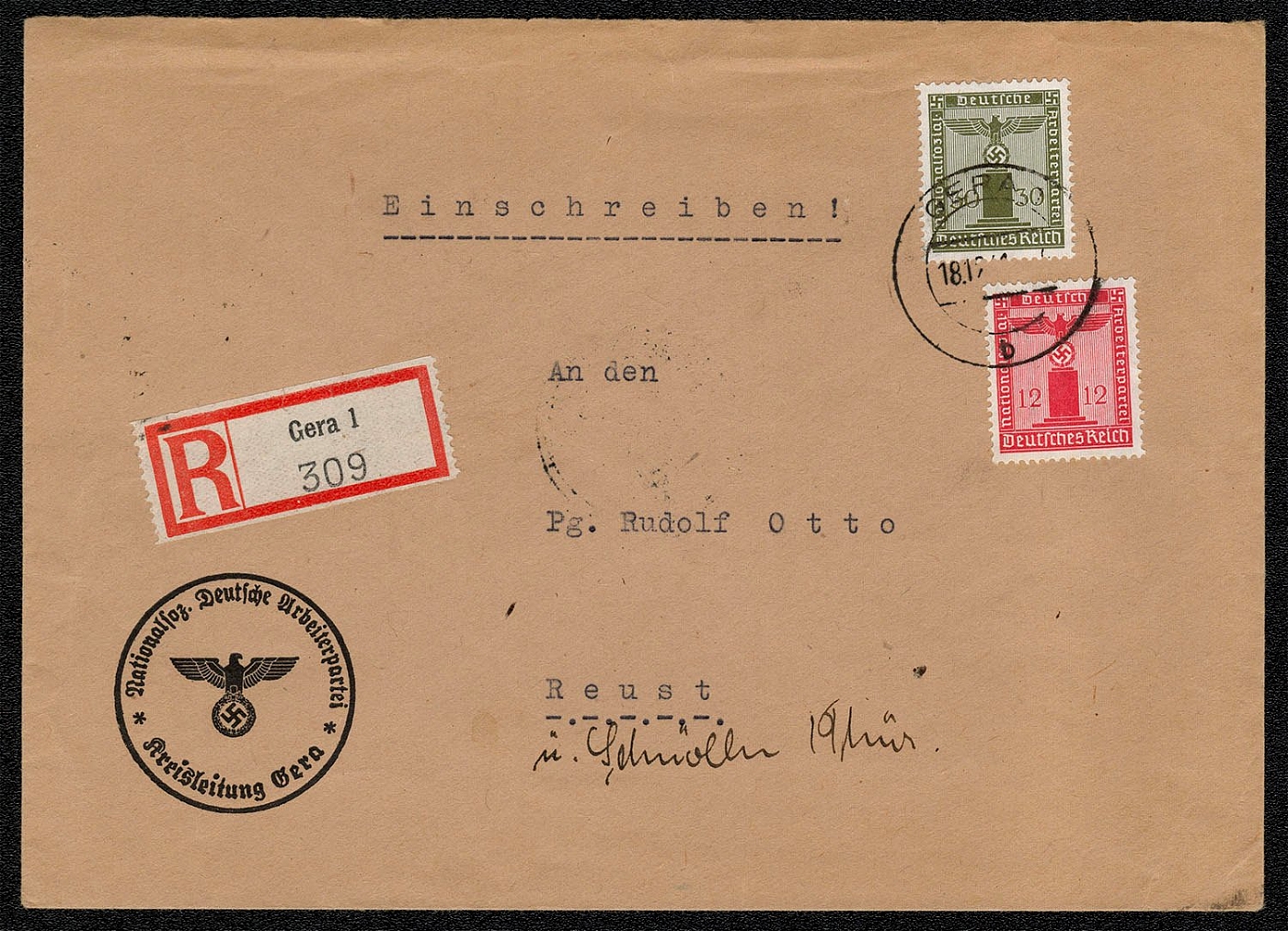
1941 Registered official mail franked with Sc S18 and S21. Posted 18 December
Registered official mail franked with Sc S18 and S21. Posted 18 December 1941 from the National Socialist German Workers Party, Gera District Administration to Parteigenossen (Party Member) Rudolf Otto Reust Schmolin in Thiiringen. Gera, a manufacturing town in central Germany with approximately 87,000 inhabitants in 1941, was the capital of the former principality of Reuss jiingere Linie (one of the Thuringian states that in 1920 formed the Freistaat Thiiringen). It is situated on the River Weisse Elster at an elevation of 620 feet.
Sold for:
$6
972
$5
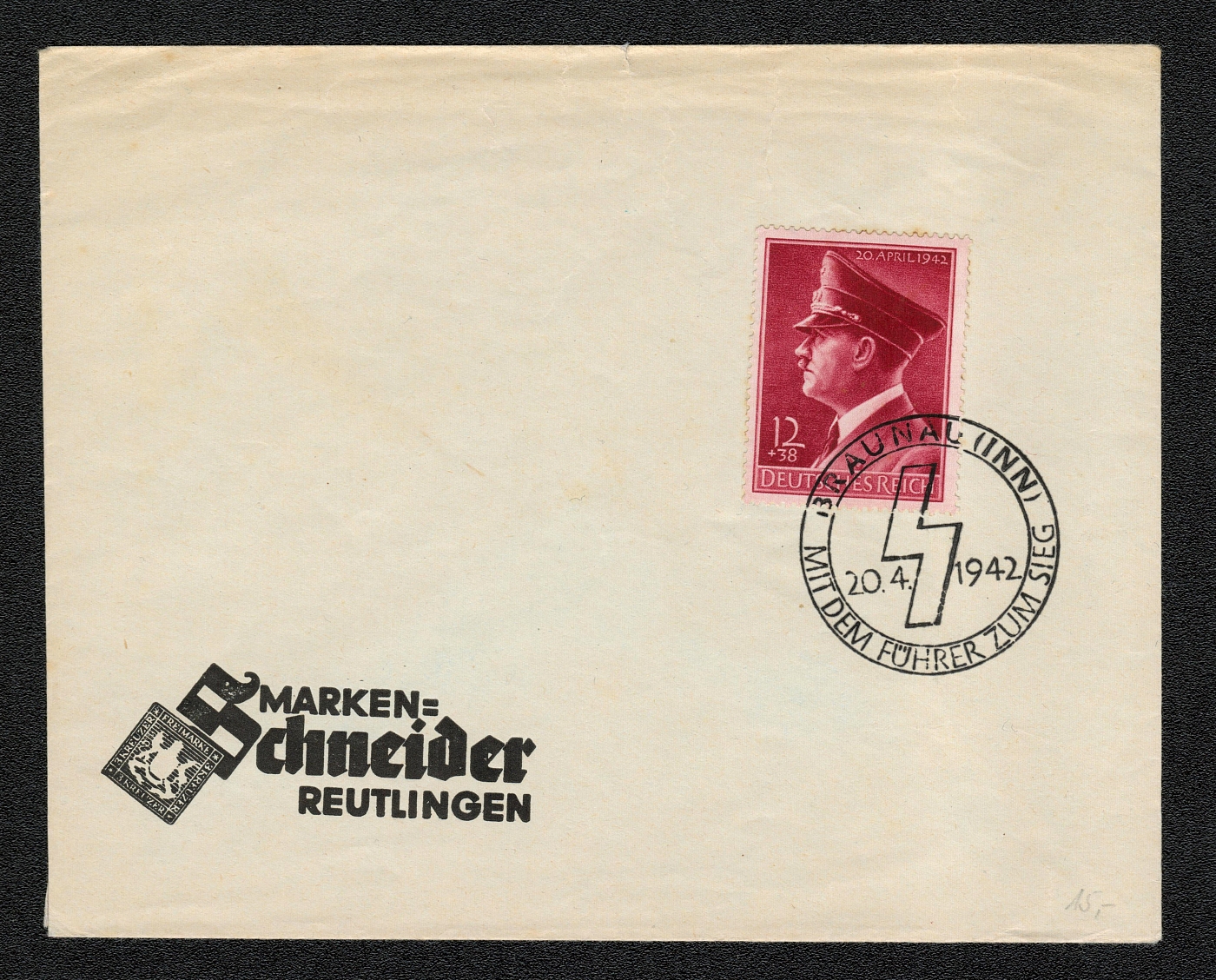
973
$5
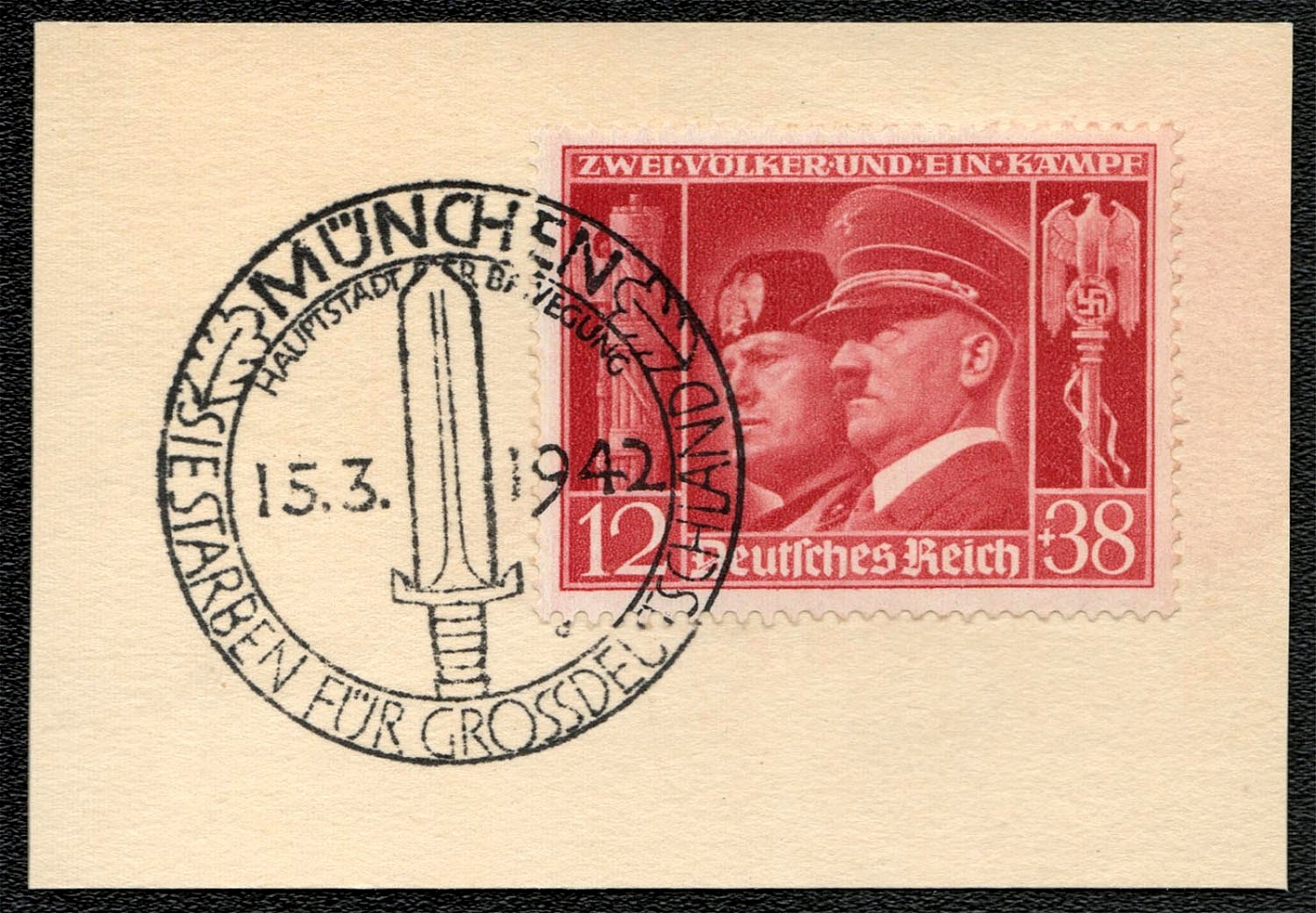
1942 Commemorative Cancellations Depicting Swords on Piece
1942 Commemorative Cancellations Depicting Swords on Piece
Sold for:
$5
974
-
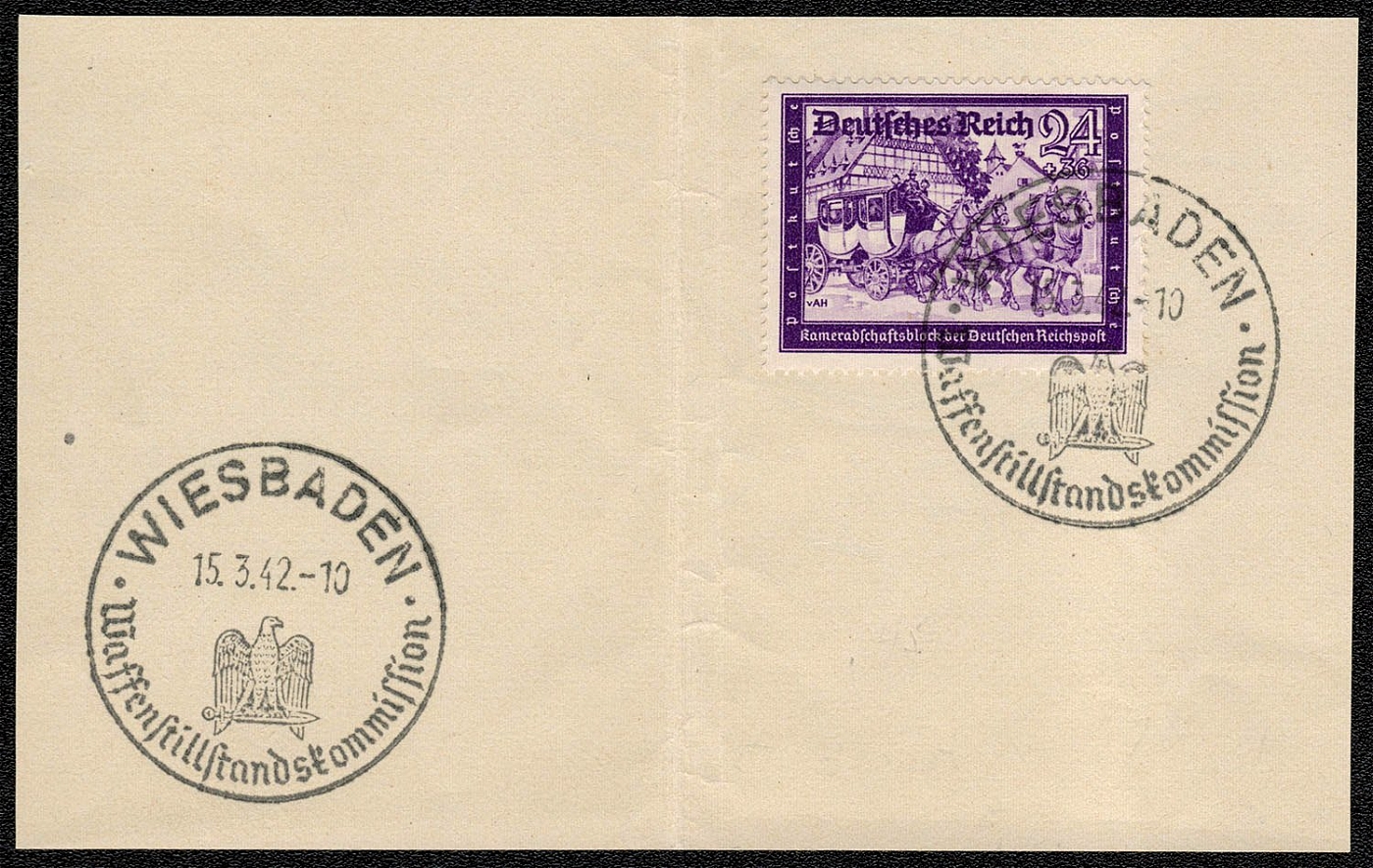
1942 Scott No. B158A on piece cancelled in Wiesbaden, 15 March 1942 depicting an eagle perched on a sword
Scott No. B158A on piece cancelled in Wiesbaden, 15 March 1942 depicting an eagle perched on a sword. The inscription, Waffenstillstandskommission, translates: Armistice Commission.
Unsold
975
$6
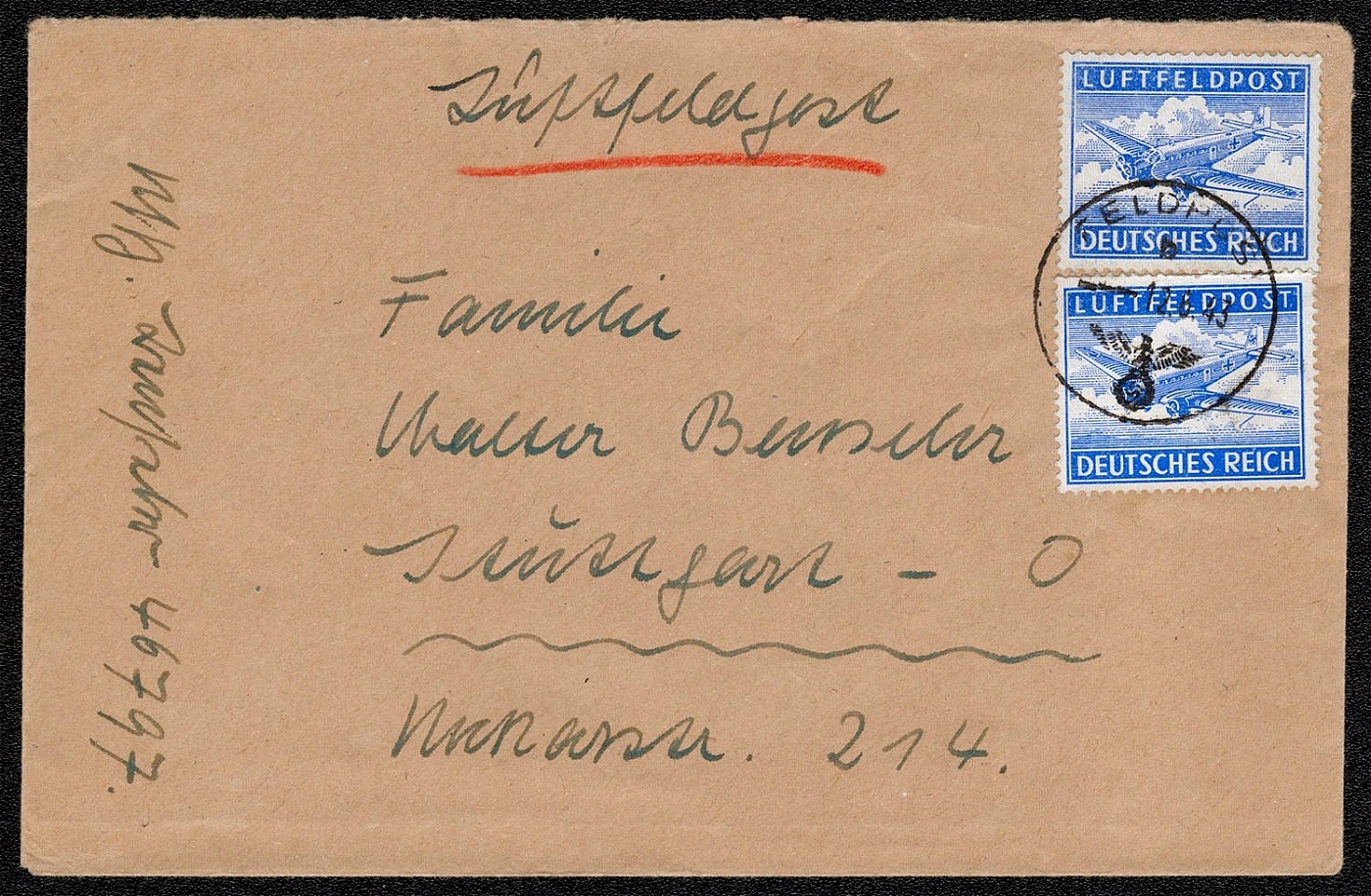
1942 Soldier’s cover (field mail) posted 12 June
To regulate the volume of airmail to and from the armed forces stationed on the Eastern front and in Scandinavia. Greece, and Africa, concession labels or stamps were introduced. All airmail from Germany was sent to the newly created Luftpost Sammelstelle (airmail central depot) in Berlin, which sorted and directed it. All eligible members of the armed forces were issued a small quantity of these concessions stamps for both their own airmail to Germany and their reply airmail from Germany. The maximum weight was ten grams. The quantities issued varied according to different times and localities, and available transport. Initially, one stamp per card or letter was required, and each soldier received four labels per month. After April 1943. two labels were necessary for a letter and one for a card, and the quantity was increased to eight labels per month. Labels were sent in the letters home, as they were required to be affixed to mail from Germany to soldiers in the field. This post was free of charge both ways.
Sold for:
$6
976
$5
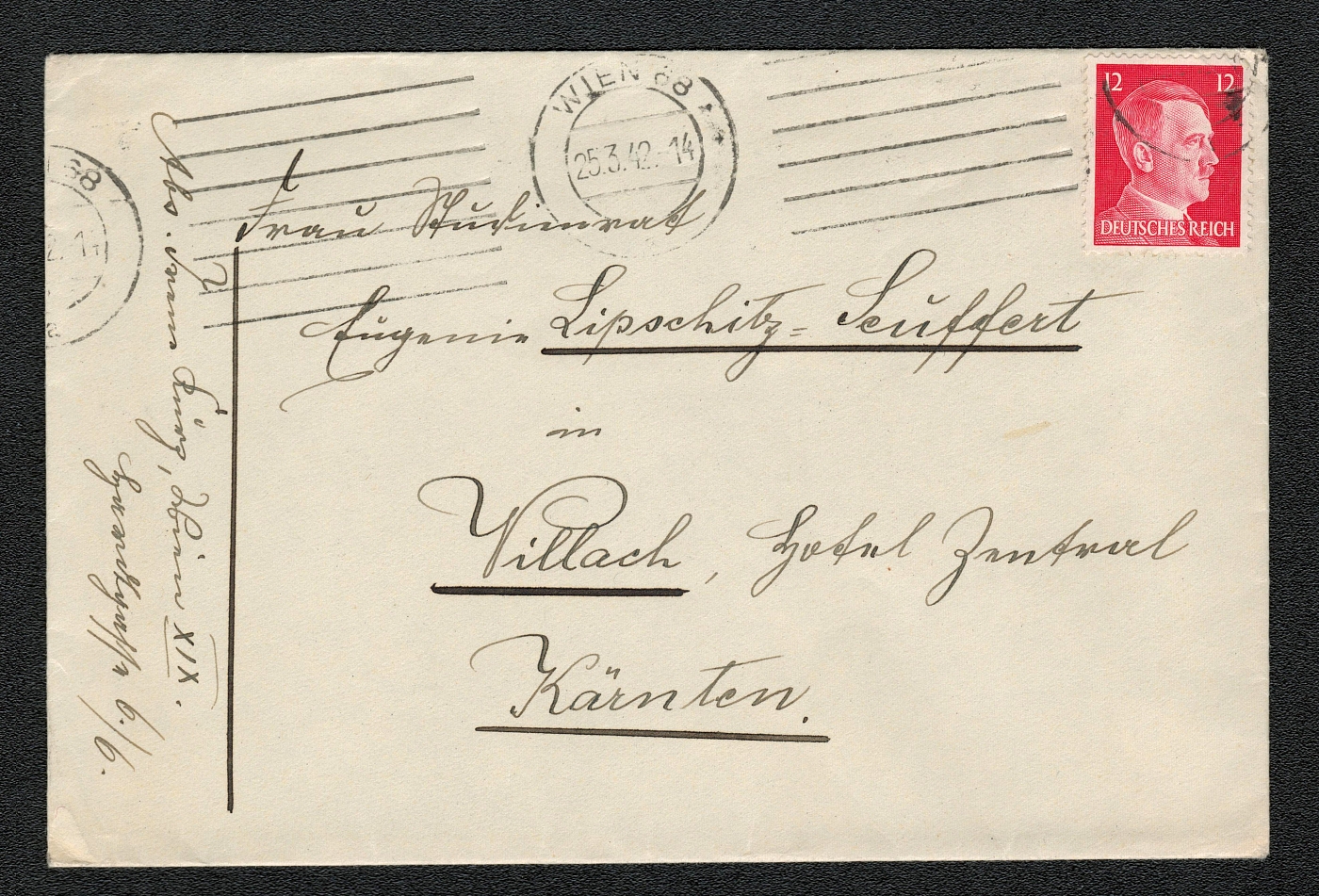
977
$5
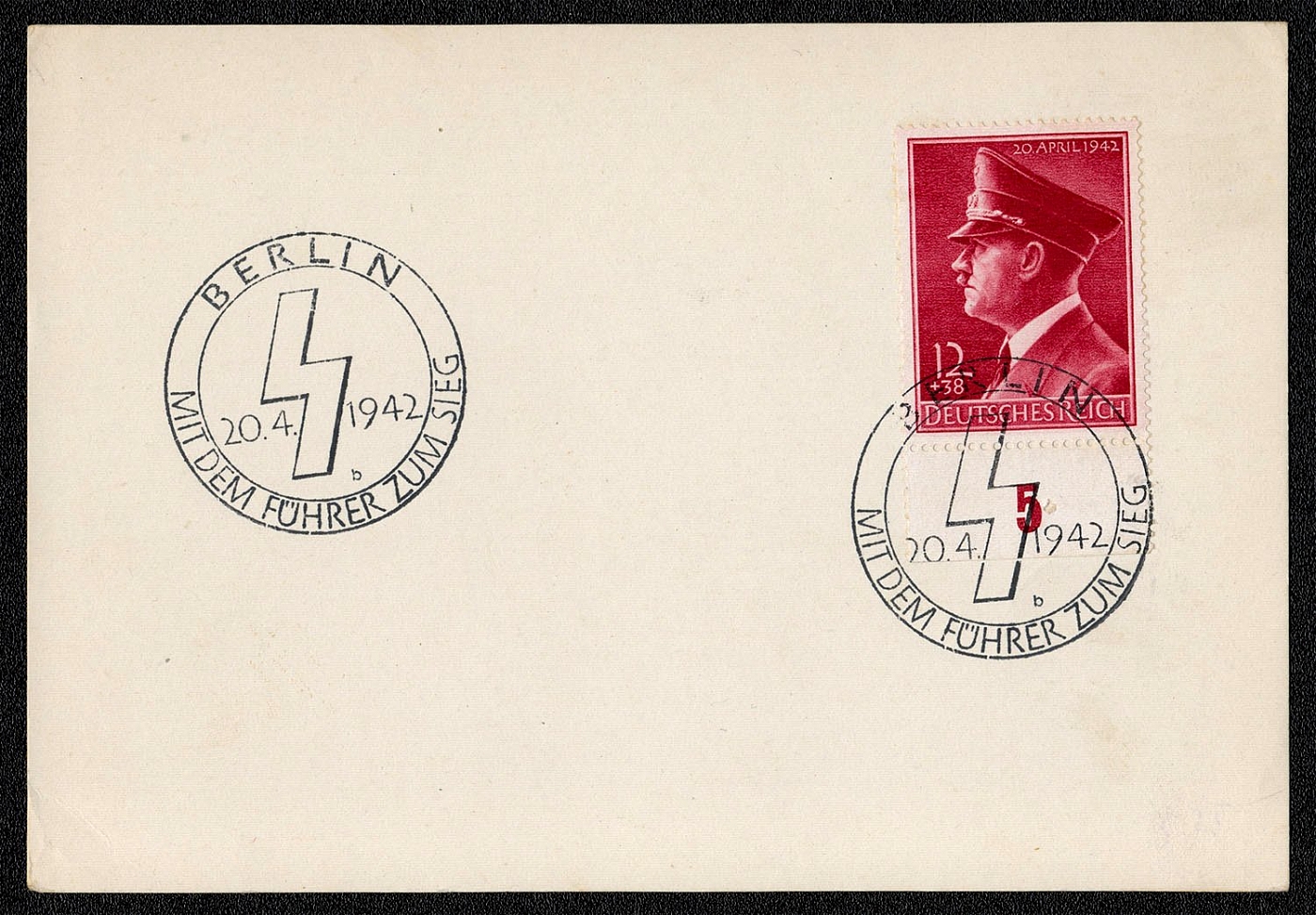
1942 Card franked with Sc B203 and the commemorative cancel for Hitler’s birthday
Card franked with Sc B203 and the commemorative cancel for Hitler’s birthday. Depicted is a “victory rune” with the inscription, With the leader to victory. This postmark was used in Berlin on 20 April 1942 only, the actual date of Hitler’s birthday. A similar postmark was also used in Braunau, Miinchen, Strassburg, and Wien.
Sold for:
$5
978
$5
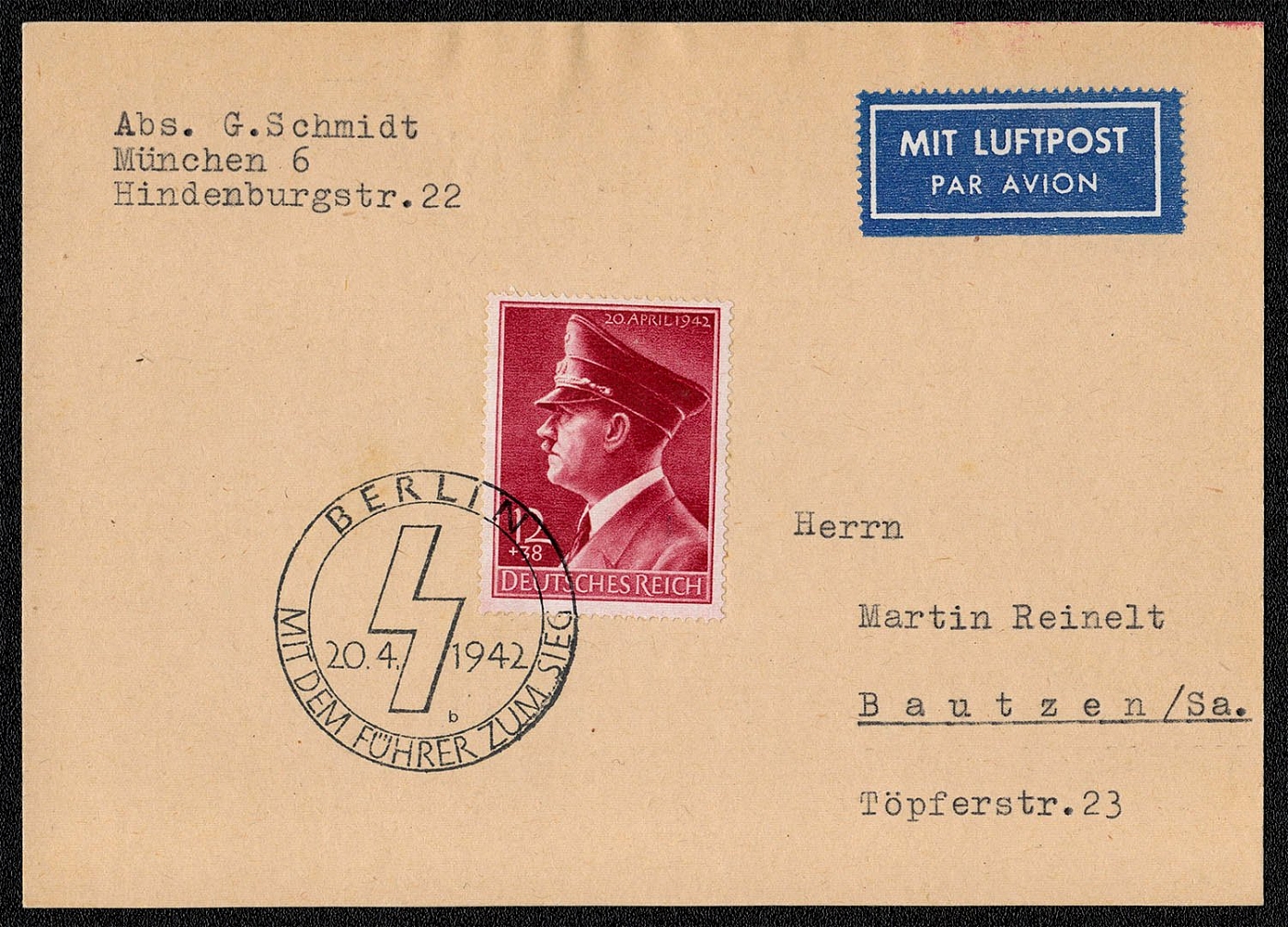
1942 Card franked with Sc B203 and the commemorative cancel for Hitler’s birthday Posted in Berlin
Card franked with Sc B203 and the commemorative cancel for Hitler’s birthday. Posted in Berlin on 20 April 1942. The message on the reverse reads: Aus Berlin, den 19.4.1942 12/4 Lieber Martin! Mit dem Sonderstempel aus Berlin iibersende ich Dir die besten Griisse Dear Martin! I am forwarding this special cancellation to you from Berlin with my best wishes.
Sold for:
$5
979
-
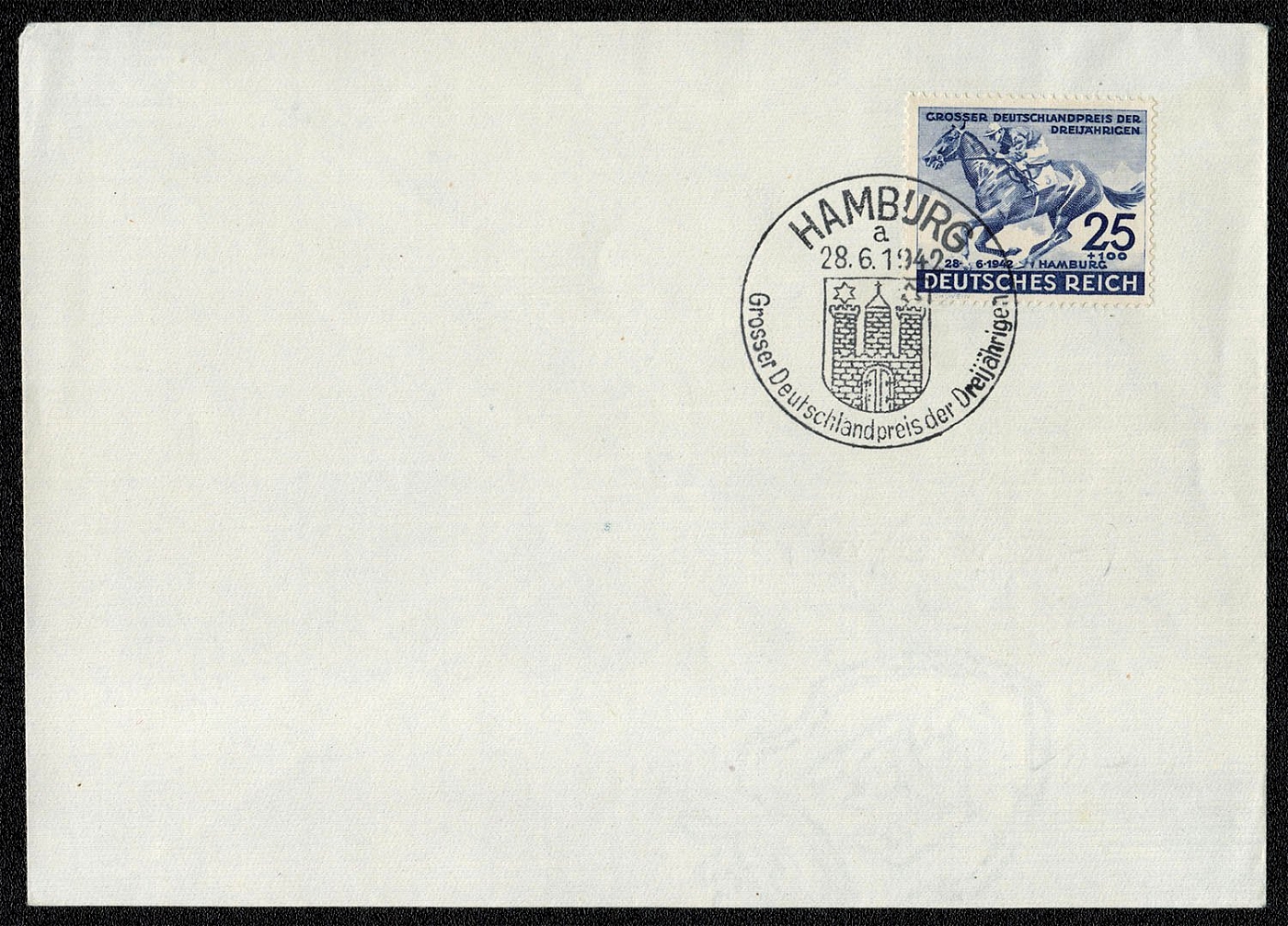
1942 Special postmark depicting the arms of Hamburg was applied 28 June, the day of the race
28 June 1942 Hamburg The gefalligkeitsstempel (favor cancellation) depicting the arms of Hamburg was applied 28 June, the day of the race. Interestingly, the castle in the coat of arms has a Christian cross on the roof flanked on each side by a Star of David. Also, the cover is made of expensive watermarked paper. Such high quality paper was already in short supply by 1942.
Unsold
980
-
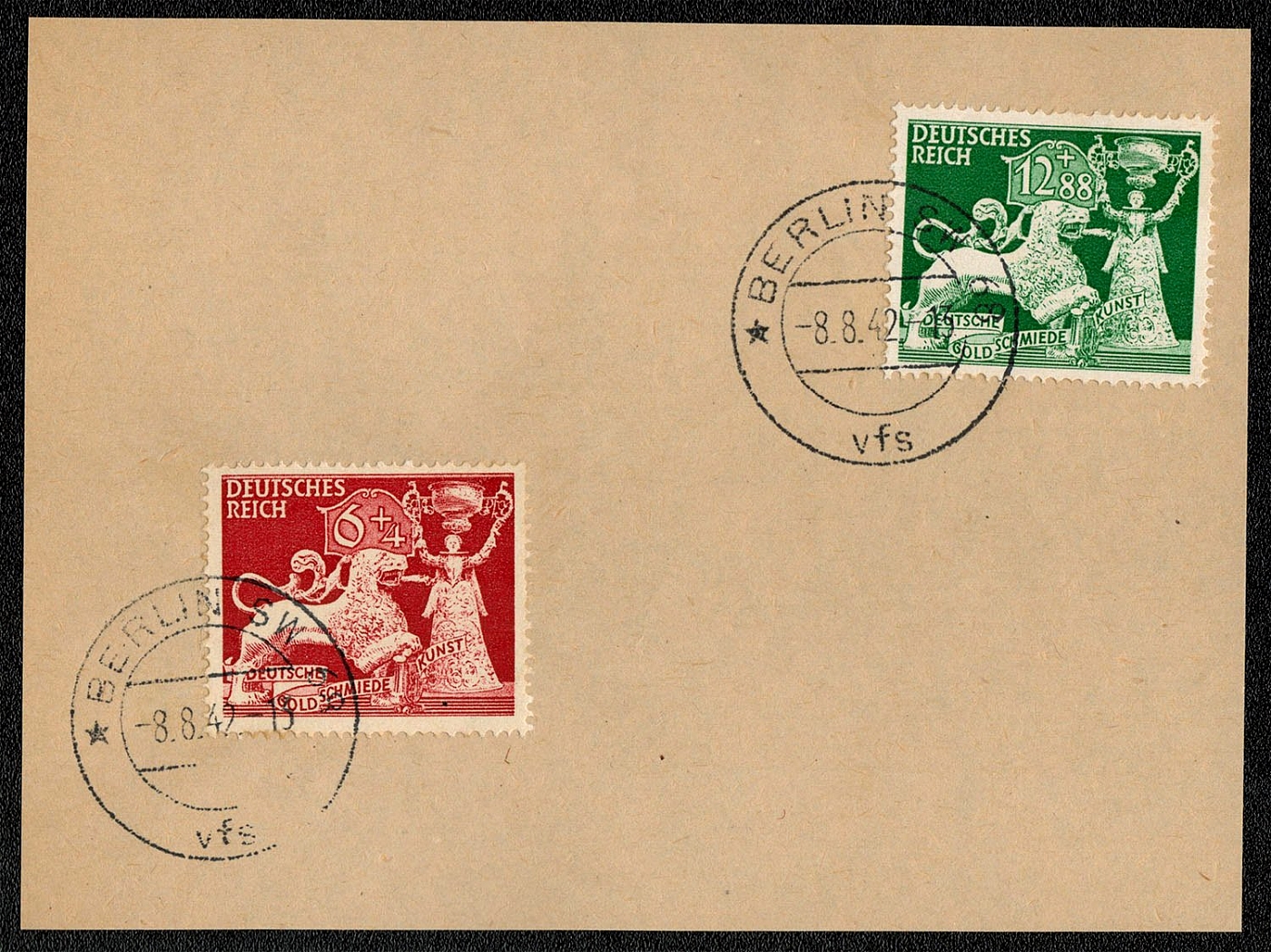
1942 Impromptu souvenir sheet cancelled in Berlin SW, 8 August 1942, the first day of issue.
Impromptu souvenir sheet cancelled in Berlin SW, 8 August 1942, the first day of issue.
Unsold
981
$5
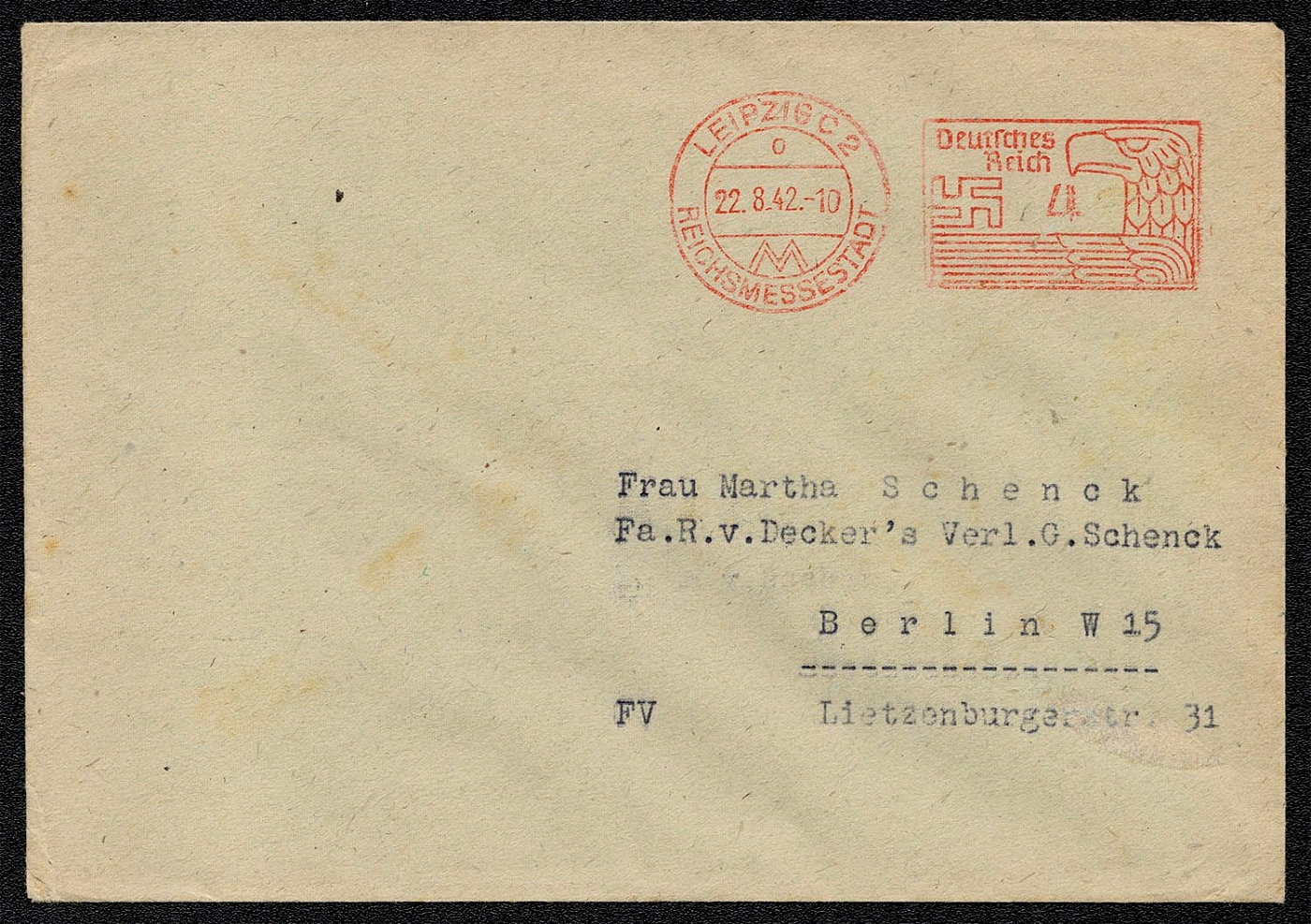
1942 Cover, probably official, franked with a 4 Rpf postage meter stamp
Cover, probably official, franked with a 4 Rpf postage meter stamp. Mailed on 22 August 1942 from Leipzig C2 (The Reichs Fair City) to the Firm of R. von Decker Publishing 31 Lietzenburger Street Berlin W 15. Judging from several official mailings in this collection, von Decker Publishing did a substantial amount of government work.
Sold for:
$5
982
-
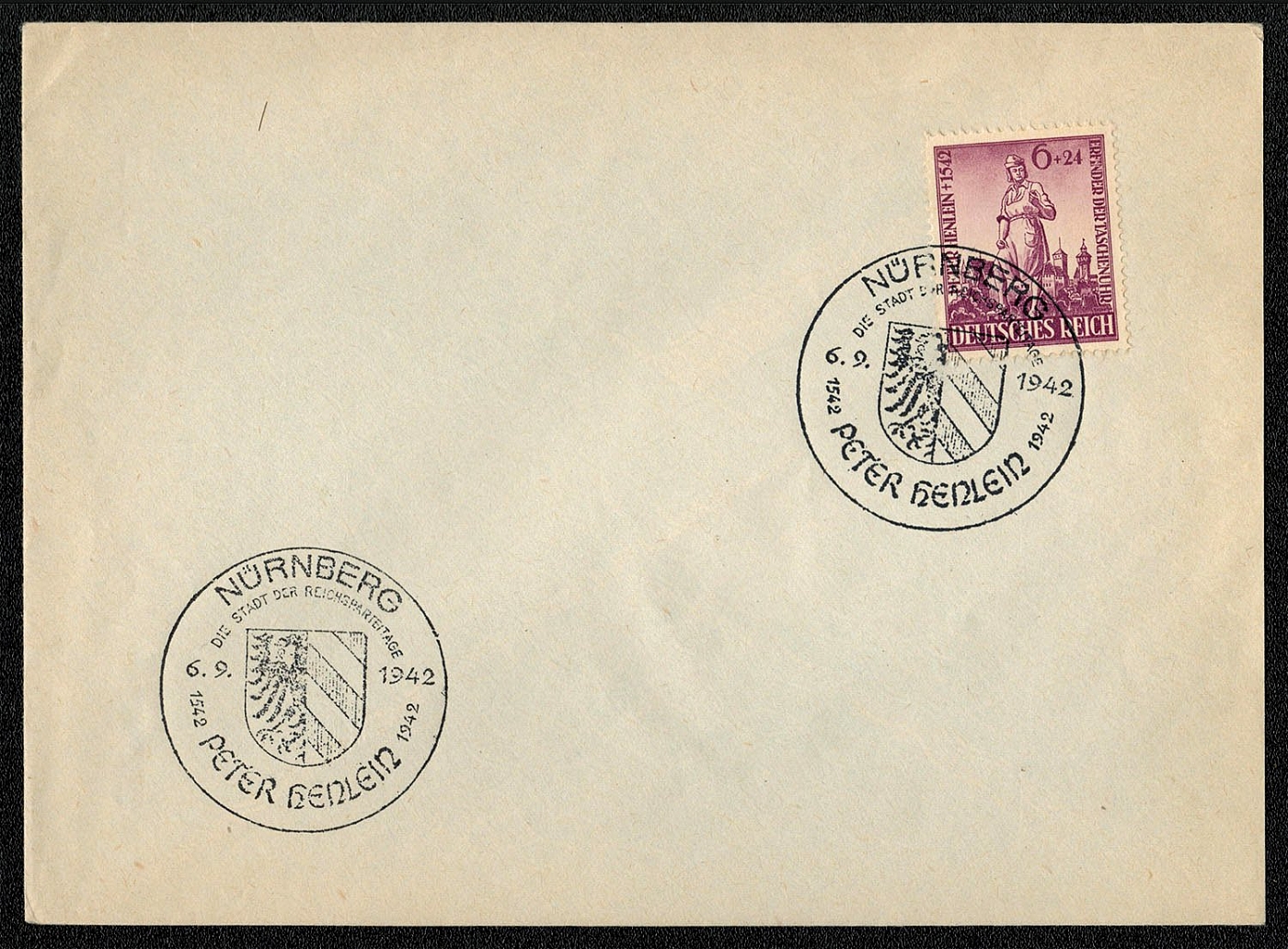
1942 The special postmark depicts the arms of Nuremberg and was used on 6 September 1942 only
The special postmark depicts the arms of Nuremberg and was used on 6 September 1942 only.
Unsold
983
-
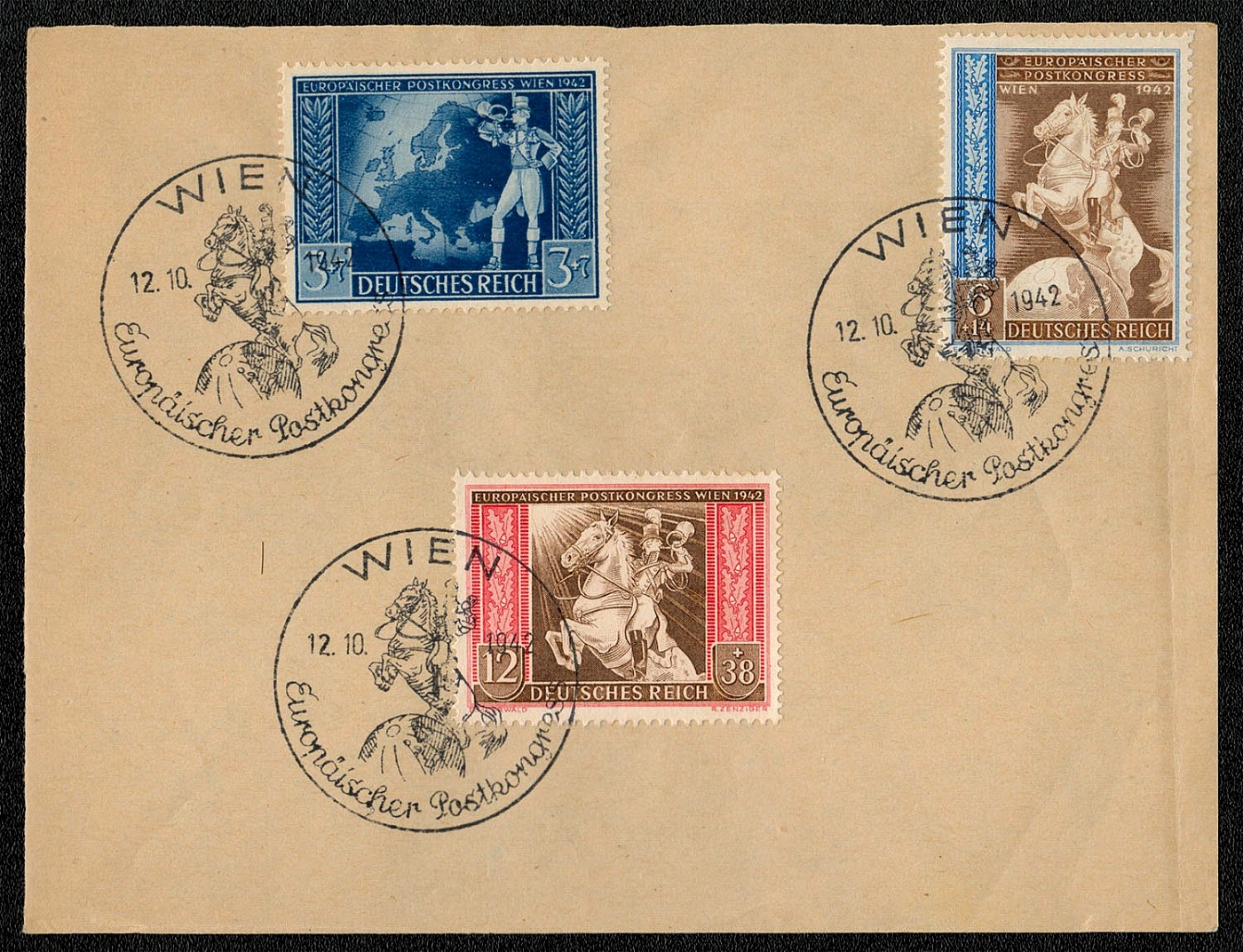
1942 The European Postal Congress of the Axis Powers in Wien
Impromptu souvenir sheet cancelled 12 October 1942, Wien.
Unsold
984
-
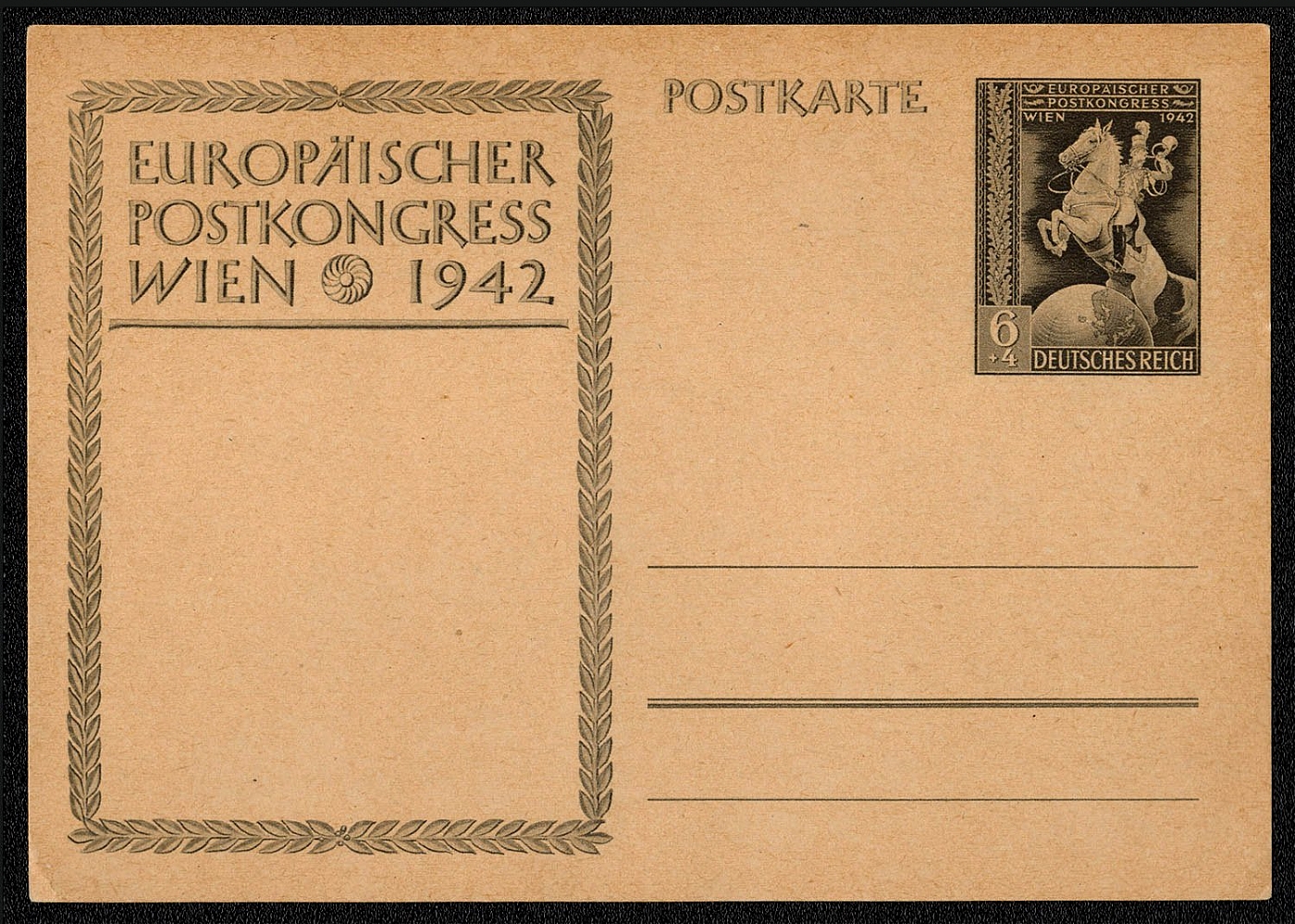
1942 Special postal card (Michel P294b) on buff colored stock issued 12 October 1942 for the European Postal Congress in Wie
Special postal card (Michel P294b) on buff colored stock issued 12 October 1942 for the European Postal Congress in Wien. The imprinted stamp designed by Erich Meerwald depicts a mounted postilion.
Unsold
985
$5
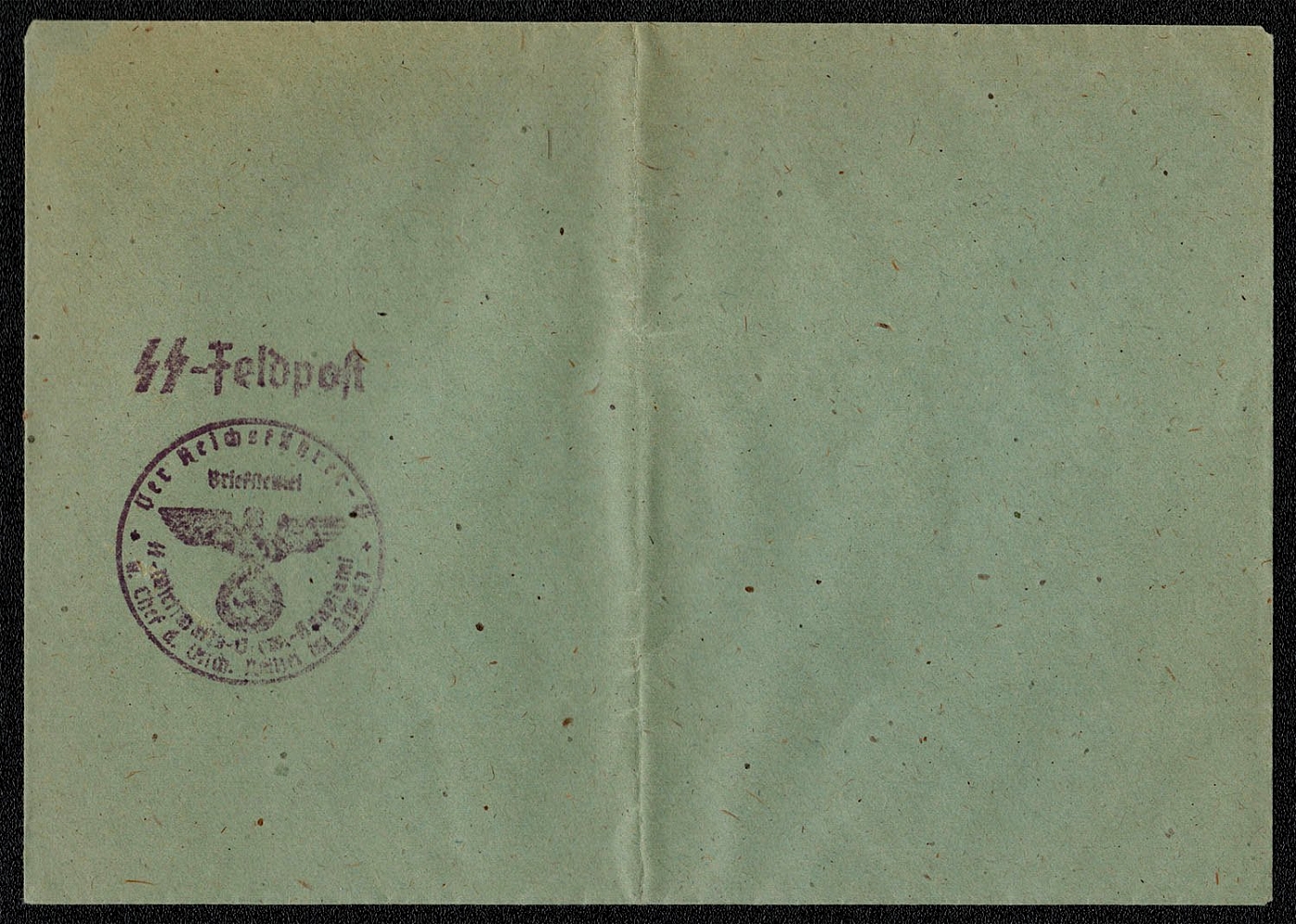
1942 Cover with courtesy SS Field Post markings
Cover with courtesy SS Field Post markings, circa 1942. The wording is difficult to decipher, but it appears to be: SS-Feldpost Der Reichsfuhrer - SS Briefstempel SS- Wirtshaft Hauptamt VV. Chef G. Urich A rough translation is as follows: SS - Field Post Reich Leader of SS Troops Letter Cancel SS Economy Head Office Chief G. Urich
Sold for:
$5
986
-
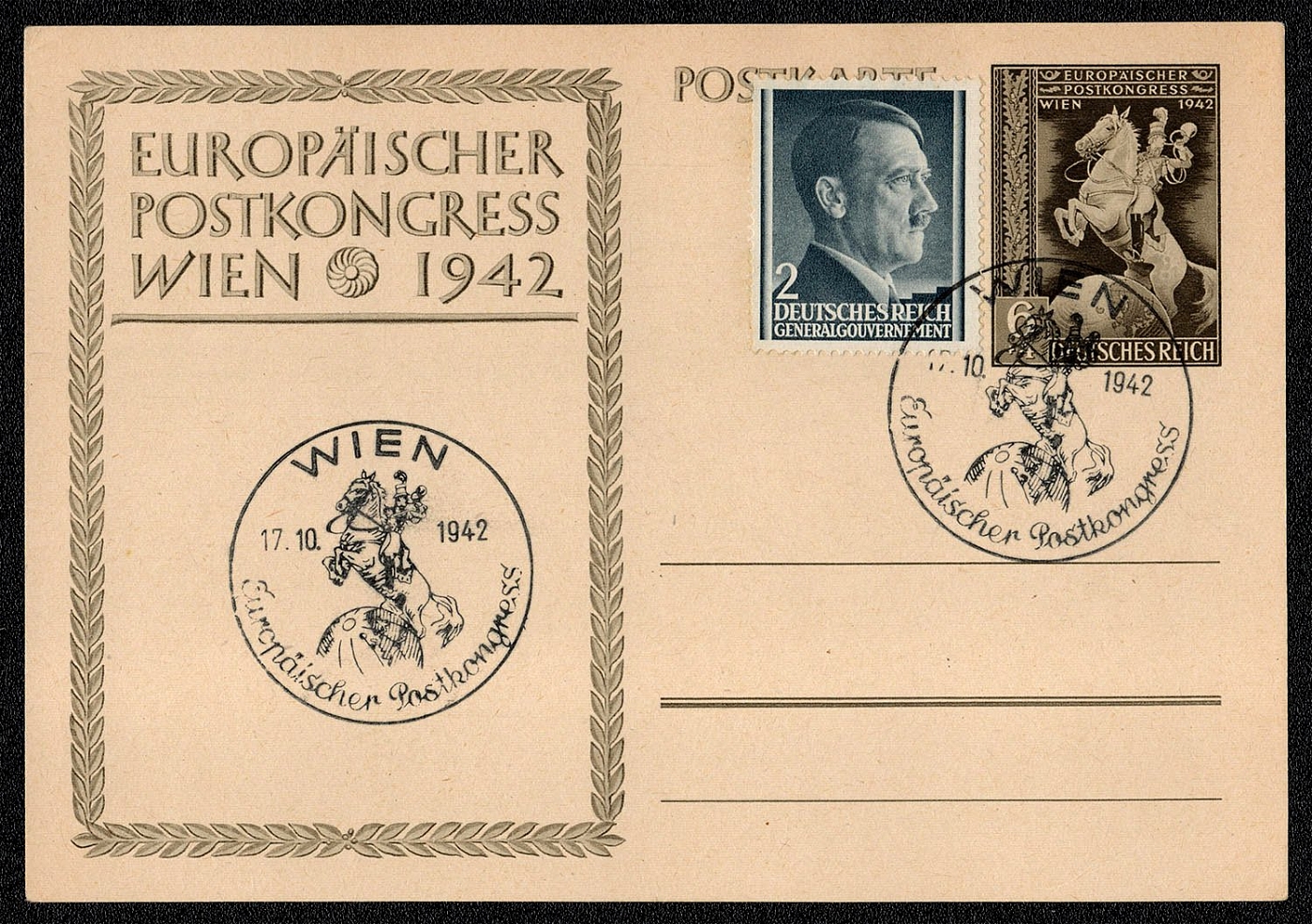
1942 Special postal card (Michel P294a) on cream colored stock issued 12 October 1942 additionally franked with Scott N76
Special postal card (Michel P294a) on cream colored stock issued 12 October 1942 additionally franked with Scott N76. Postmarked 17 October 1942.
Unsold
987
-
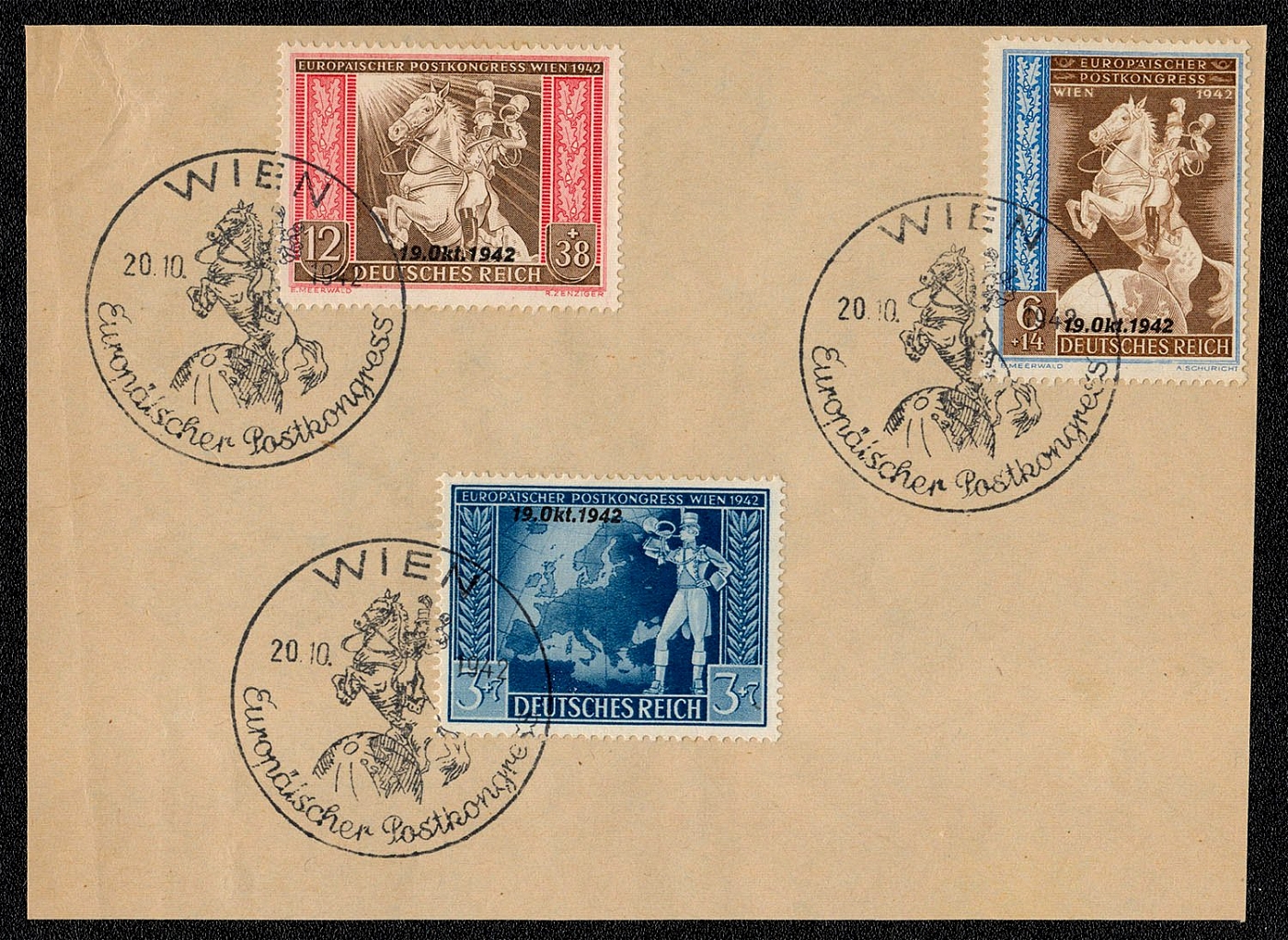
1942 Scott No. B212-214 cancelled to order on piece dated 20 October
Scott No. B212-214 cancelled to order on piece dated 20 October 1942.
Unsold
988
-

1942 cover franked with a pair of Sc 528 commemorating the Military Sports Days of the Sturmabteilung
A philatelically prepared, but postally used cover franked with a pair of Sc 528 commemorating the Military Sports Days of the Sturmabteilung. Mailed from Leipzig 02 on 22 October 1942 to Schluchtern. The Serienstempel (roller cancel):
Unsold
989
-
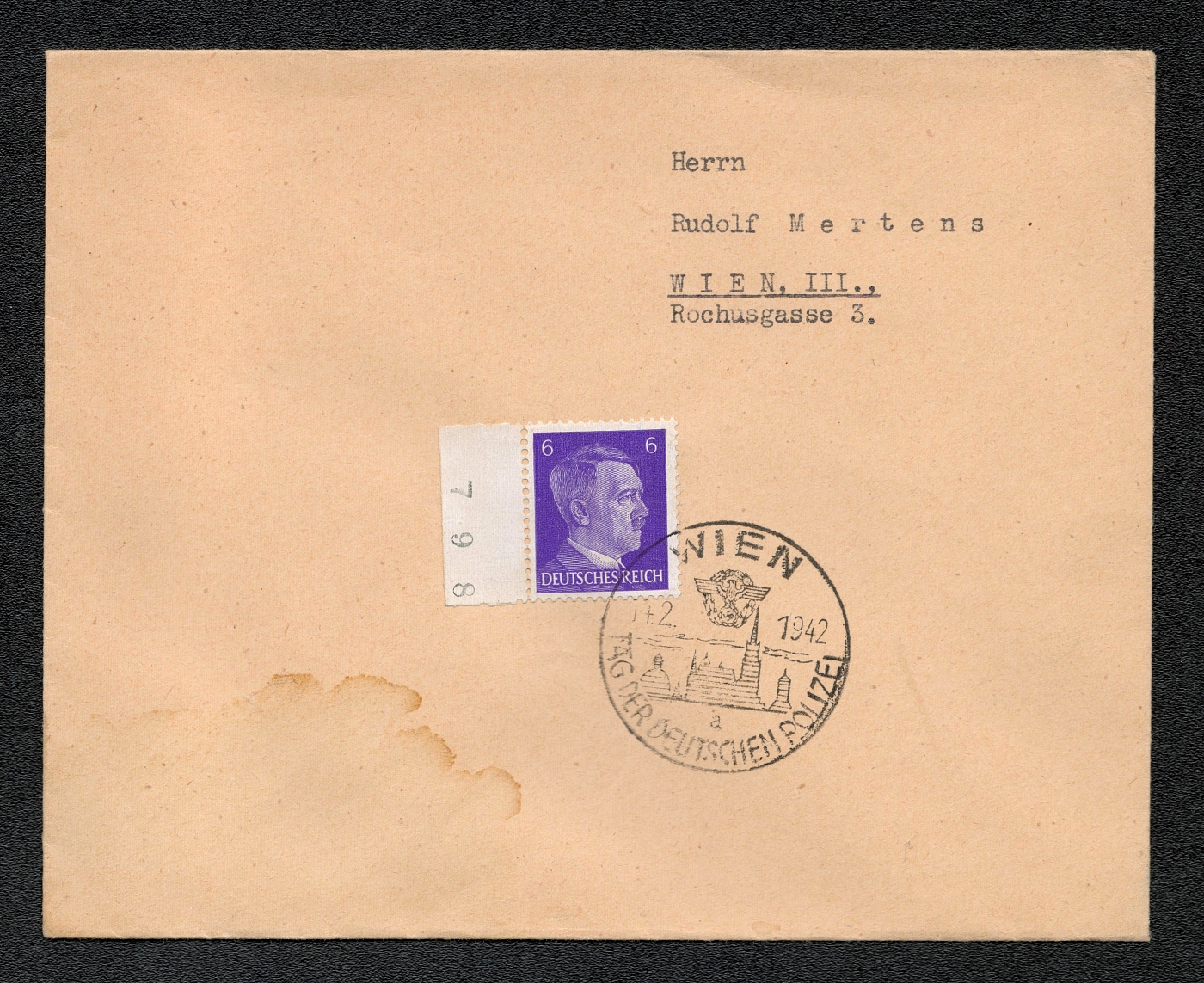
990
$5
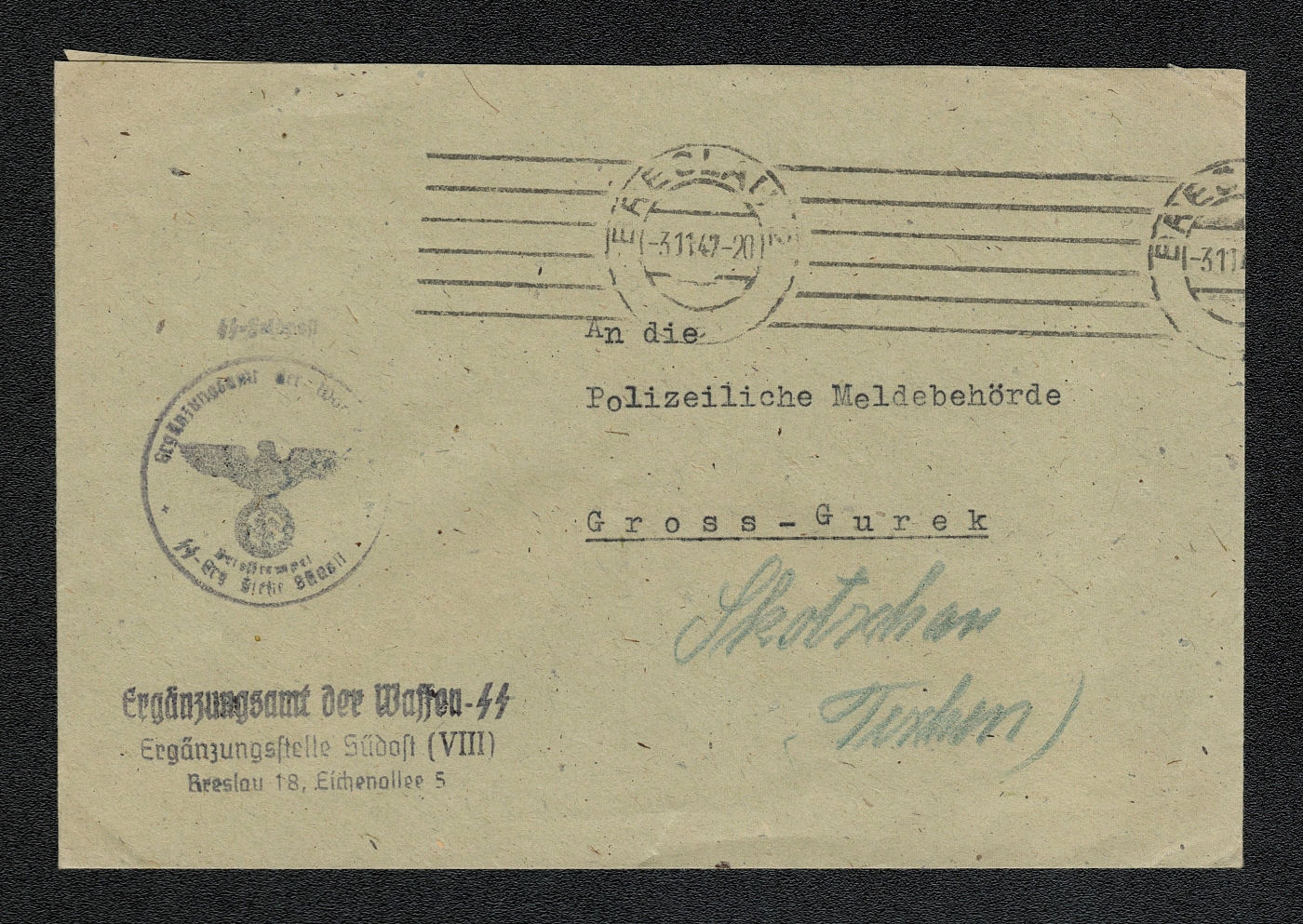
1942 Breslau Cover with SS Field Post markings
1942 Breslau Cover with SS Field Post markings
Sold for:
$5
991
-
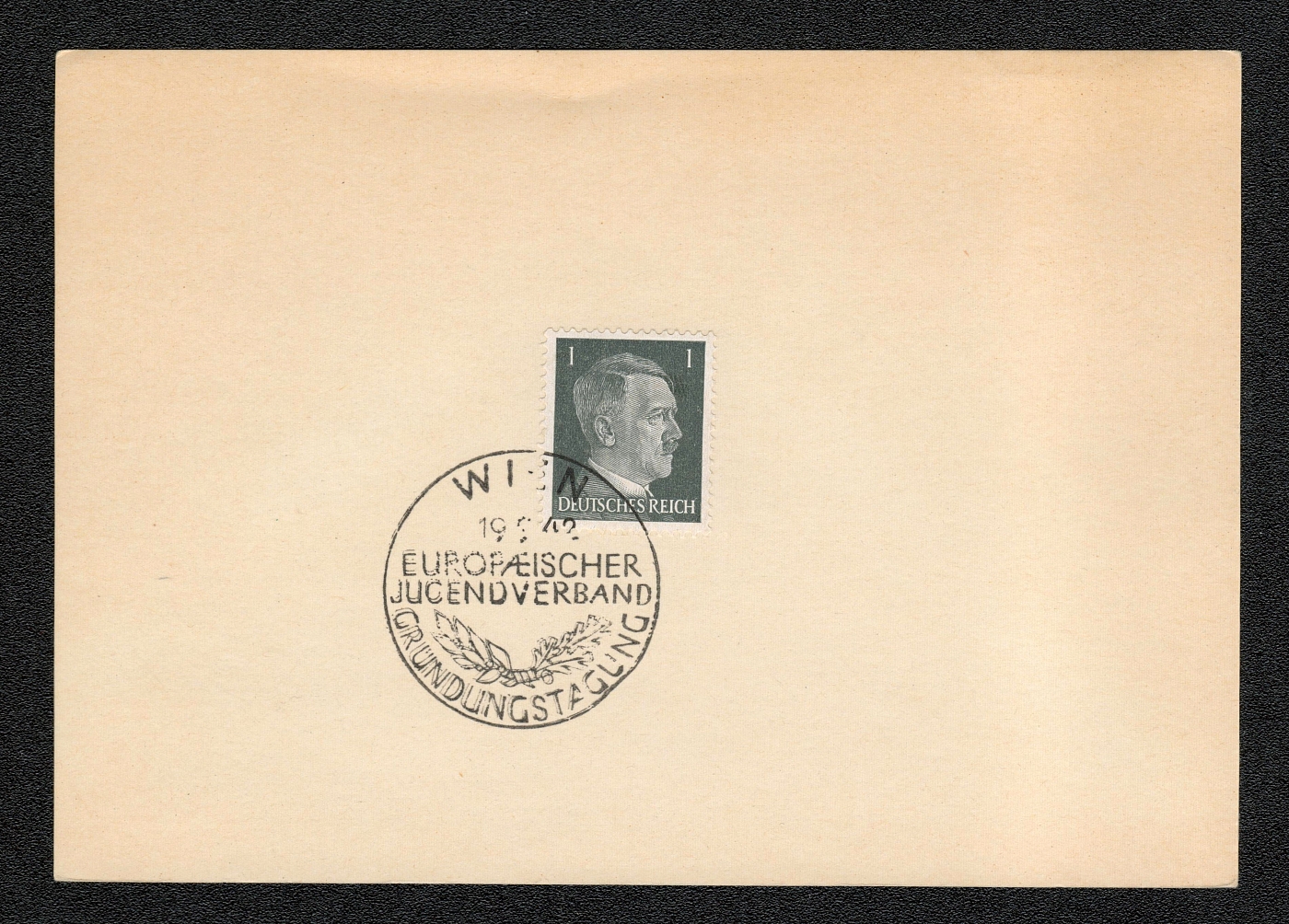
992
-
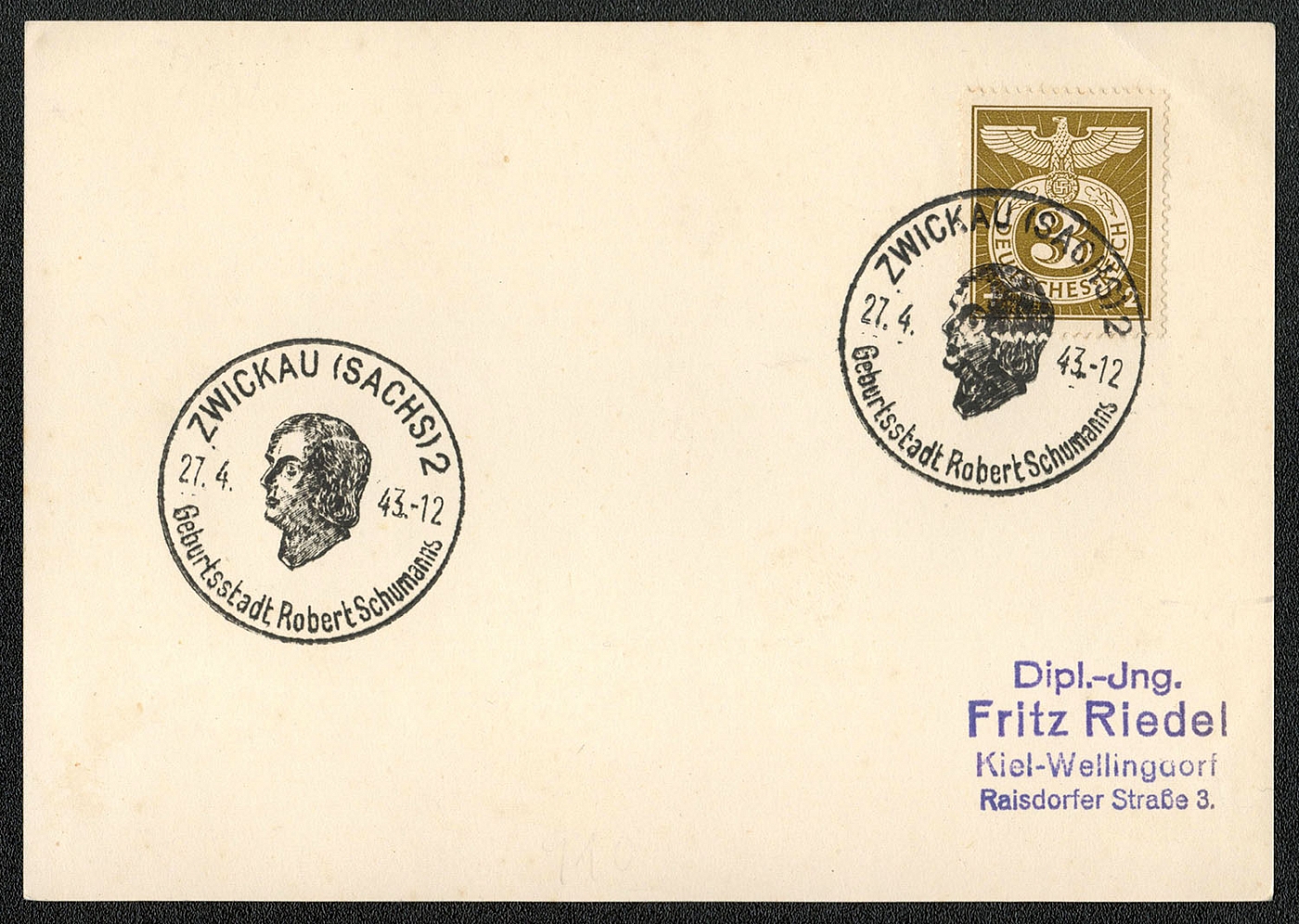
993
$5
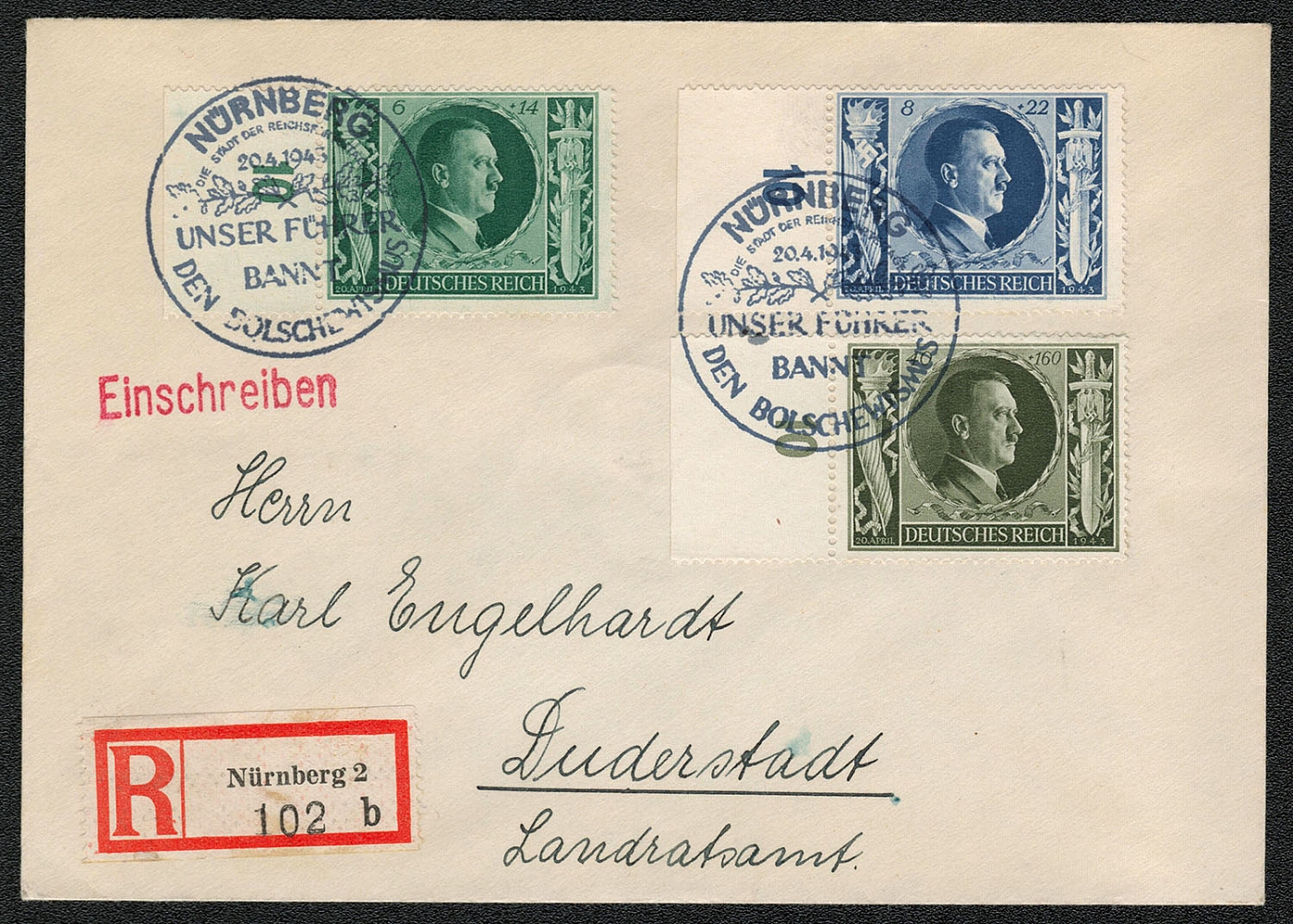
1943 Nuremberg Registered cover with Special postmark anti-bolshevik propaganda
1943 Nuremberg Registered cover with Special postmark anti-bolshevik propaganda
Sold for:
$5
994
$5
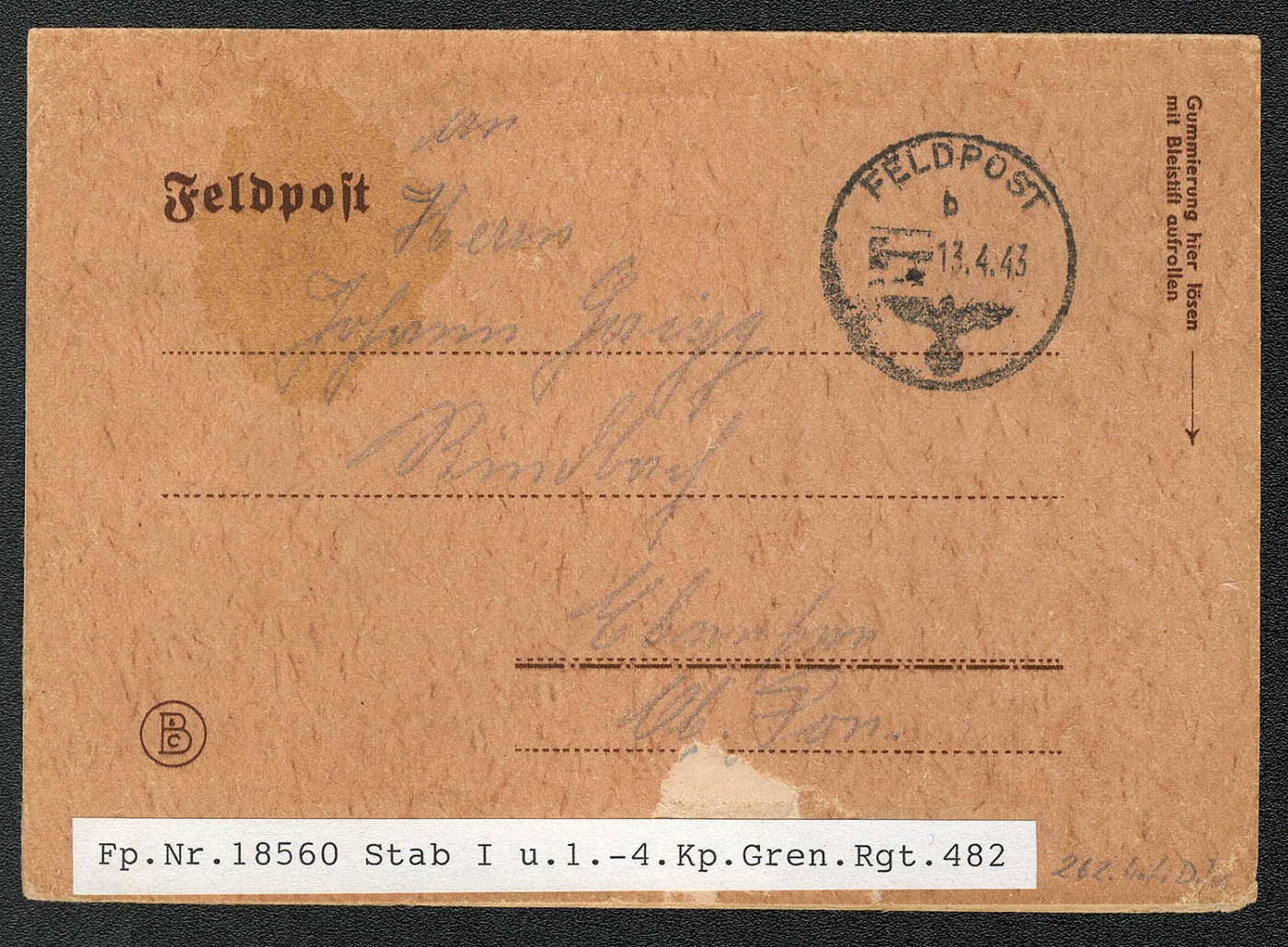
995
$12
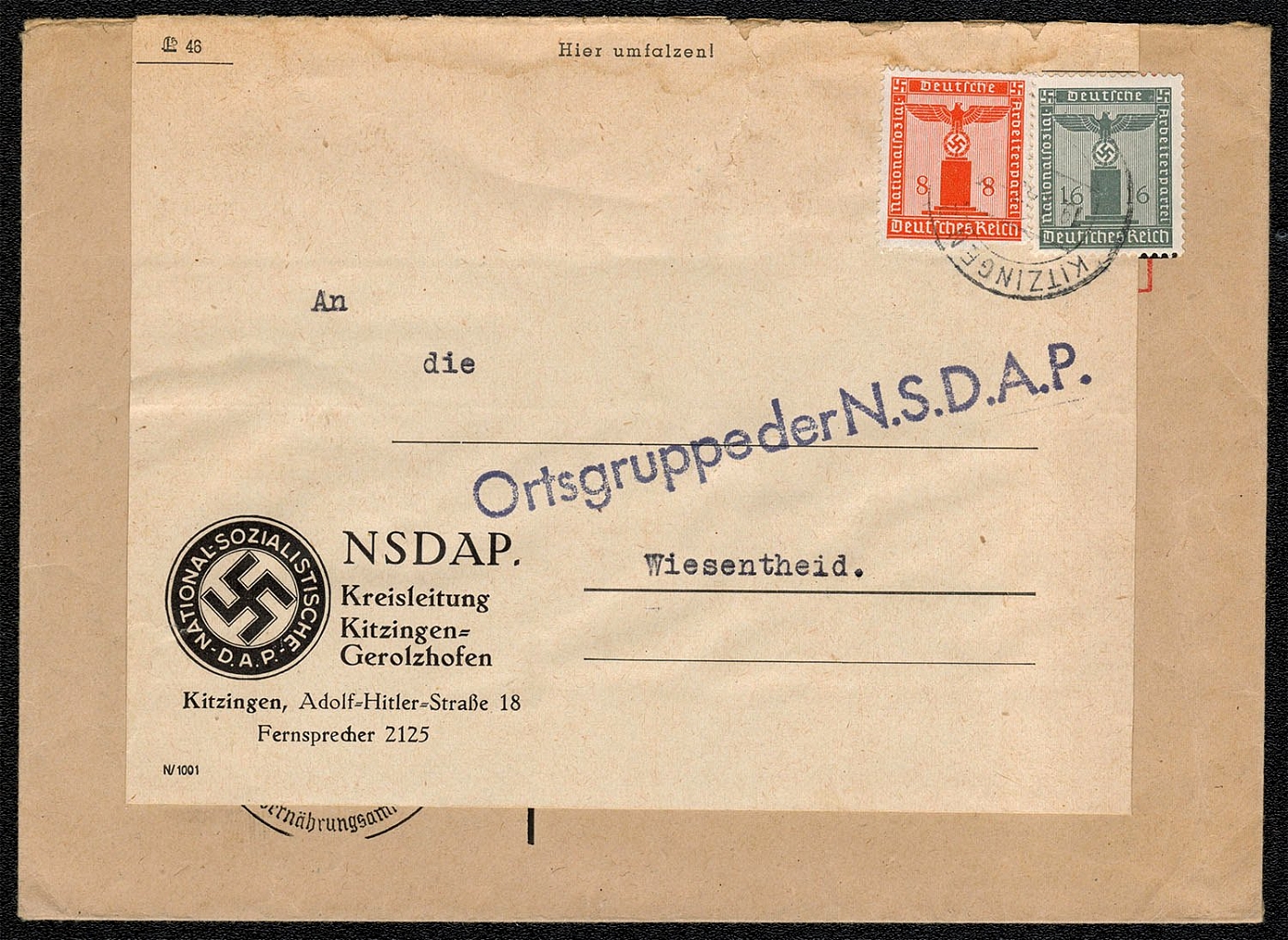
1943 Official cover franked with Sc S17 and S19 sent on 19 January from the NSDAP
Official cover franked with Sc S17 and S19 sent on 19 January 1943 from the NSDAP. Kreisleitung Kitzingen=Gerolzhofen (District Administration for Kitzingen-Gerolzhoferi) to the Ortsgruppe der N.S.D.A.P. Wiesentheid. (NSDAP Town Group, Wiesentheid) In the early 1940s, Kitzingen and Gerolzhofen, small towns northwest of Nurnberg, comprised a National Socialist district. Wiesentheid was an even smaller town within the district. The notation at the top of the mailing label Hier umfalzen! translates as Fold here! The recommendation was obviously not followed.
Sold for:
$12
996
-
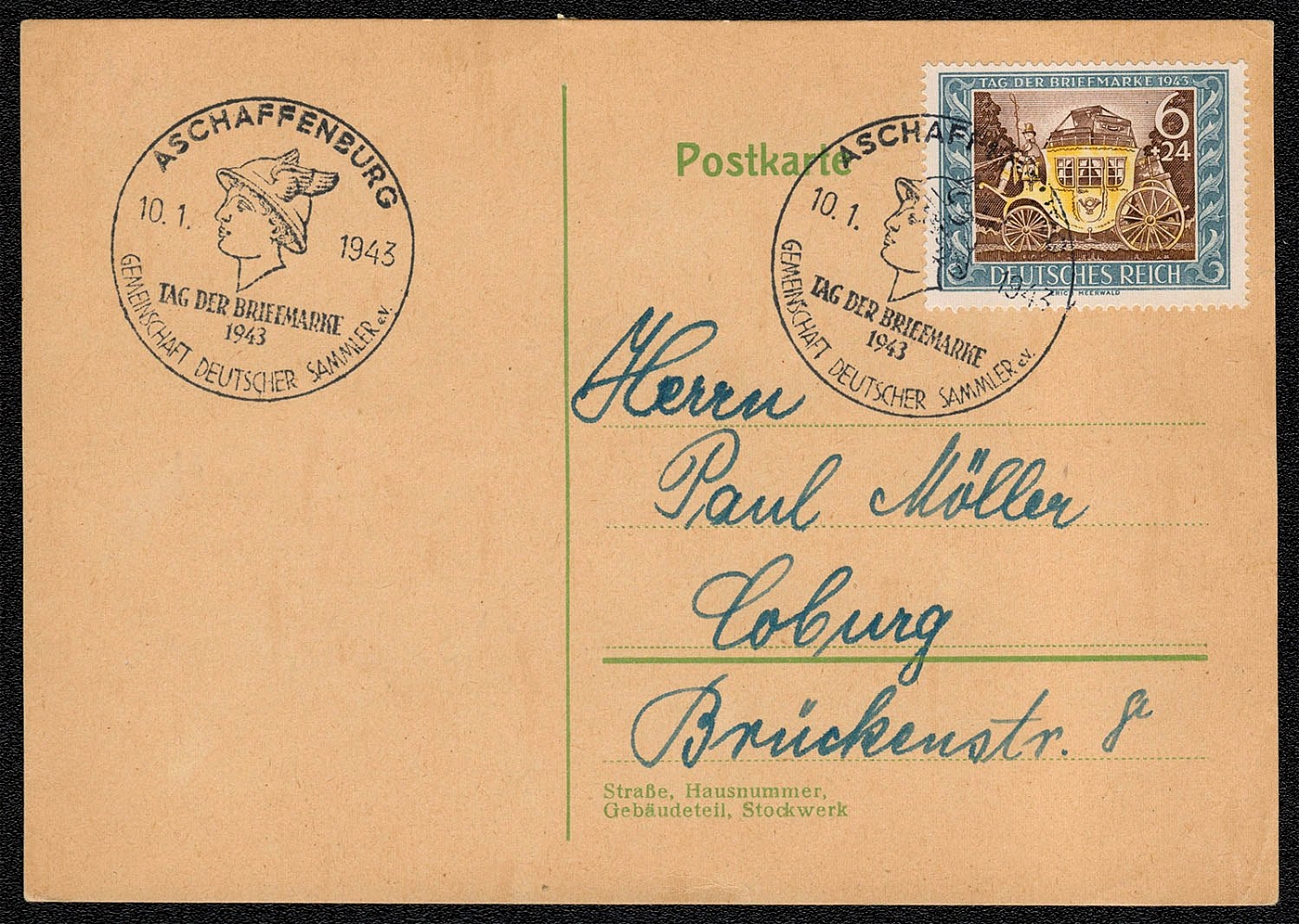
1943 Aschaffenburg postcard with Special postmark Day of Stamps
1943 Aschaffenburg postcard with Special postmark Day of Stamps
Unsold
997
$5
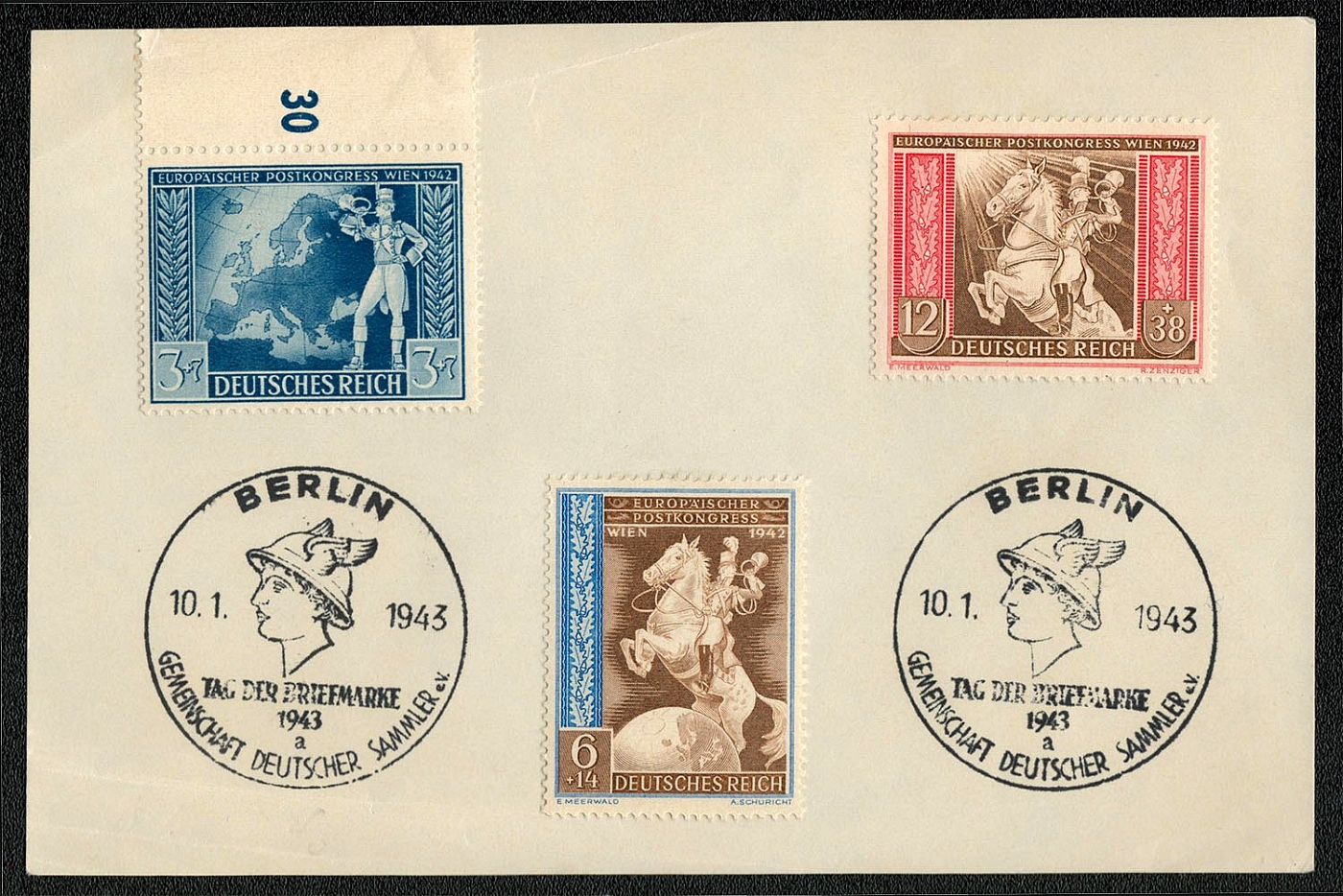
1943 Berlin postcard with Special postmark Day of Stamps
1943 Aschaffenburg postcard with Special postmark Day of Stamps
Sold for:
$5
998
$25
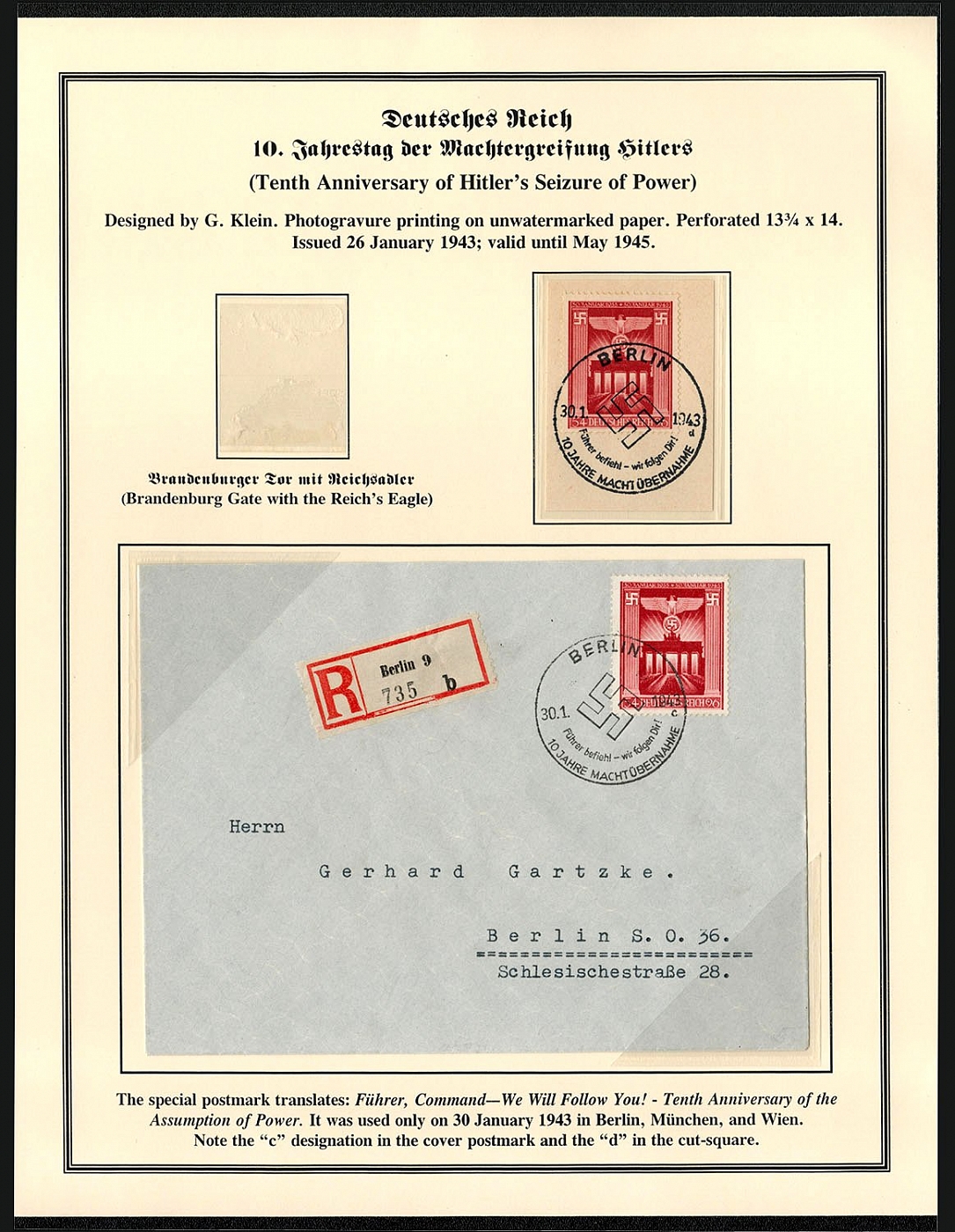
1943 Berlin registered cover with special postmark translates: Fuhrer, Command—We Will Follow You!
The special postmark translates: Fuhrer, Command—We Will Follow You! - Tenth Anniversary of the Assumption of Power. It was used only on 30 January 1943 in Berlin, Munchen, and Wien. Note the “c” designation in the cover postmark and the “d” in the cut-square.
Sold for:
$25
999
-
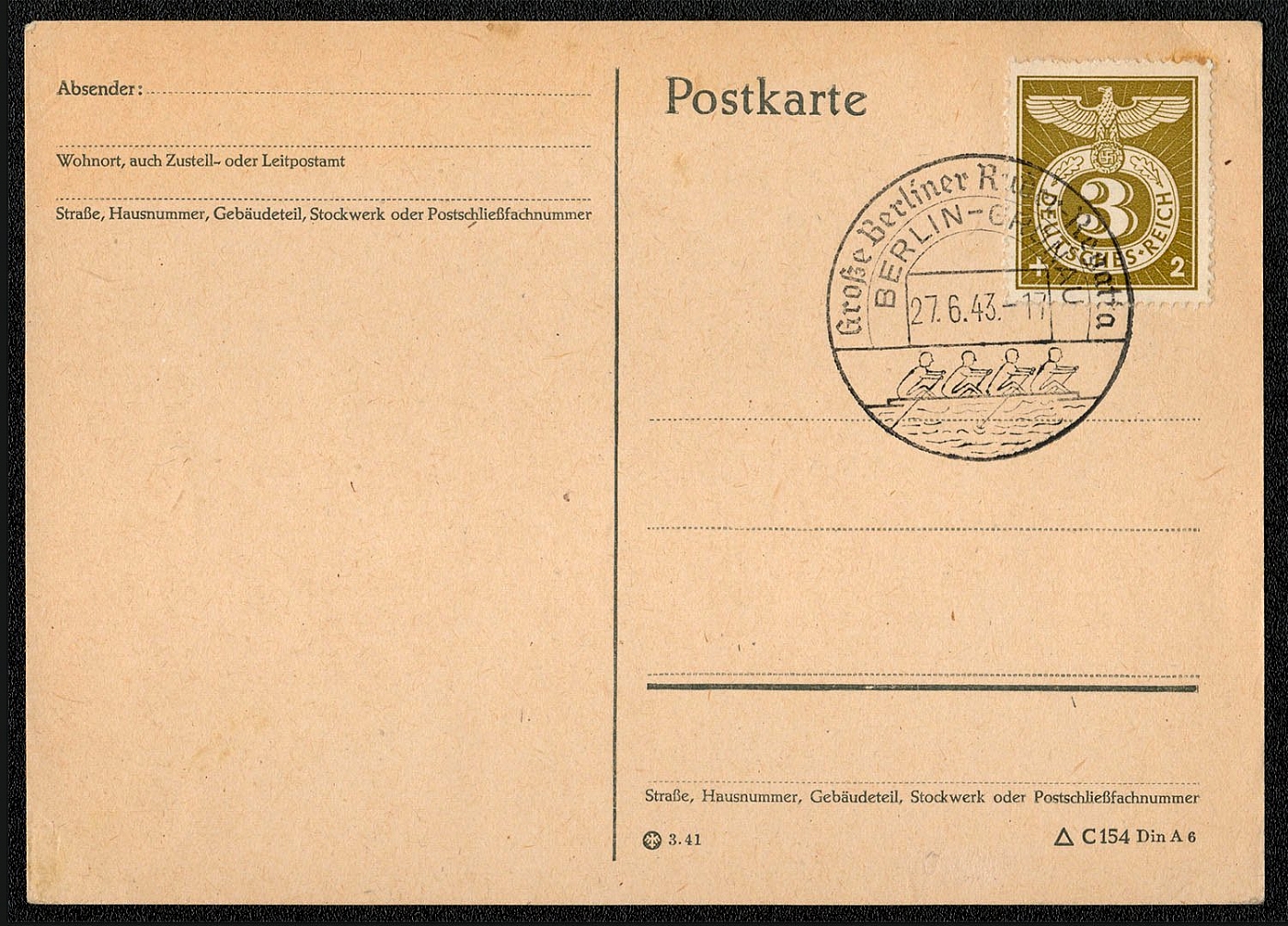
1943 Scott B217 with Special postmark Berlin-Grunau 27 June
Scott B217 with Gefalligkeitsstempel (favor cancellation) postmarked: Berlin-Grunau 27 June 1943 The cancellation reads: Greater Berlin Rowing Regatta The stamp was issued for collectors of special postmarks. The collector affixed one to an envelope or post card, or even a piece of paper, and the postal clerk would oblige by canceling it with whatever special postmark was in use at that particular time. The surtax represented the fee for this service. The stamp is known in the two color varieties. The stamp above is the lighter of the two.
Unsold
1000
$5
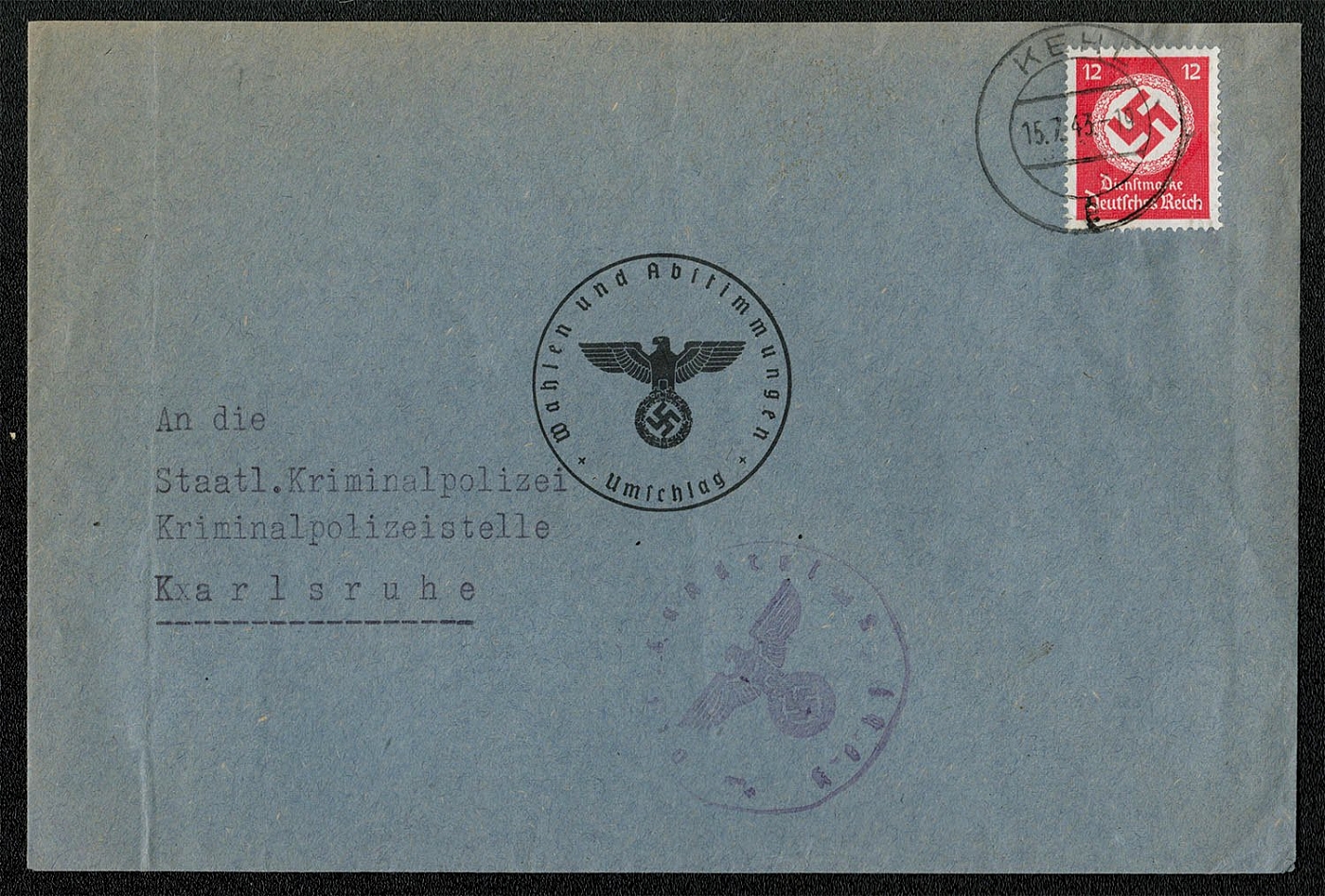
1943 Official mailing franked with Scott 098
The Official Stamp Issue of 1942/44 Official mailing franked with Scott 098. The imprinted circular stamp Vote and Polling Envelope. Posted in Kehl on 15 July 1943. The envelope is addressed to the State Criminal Police Criminal Agency Karlsruhe. The handstamp is too faint to decipher. Kehl is in western Germany, just opposite of Strasburg.
Sold for:
$5
1001
$5
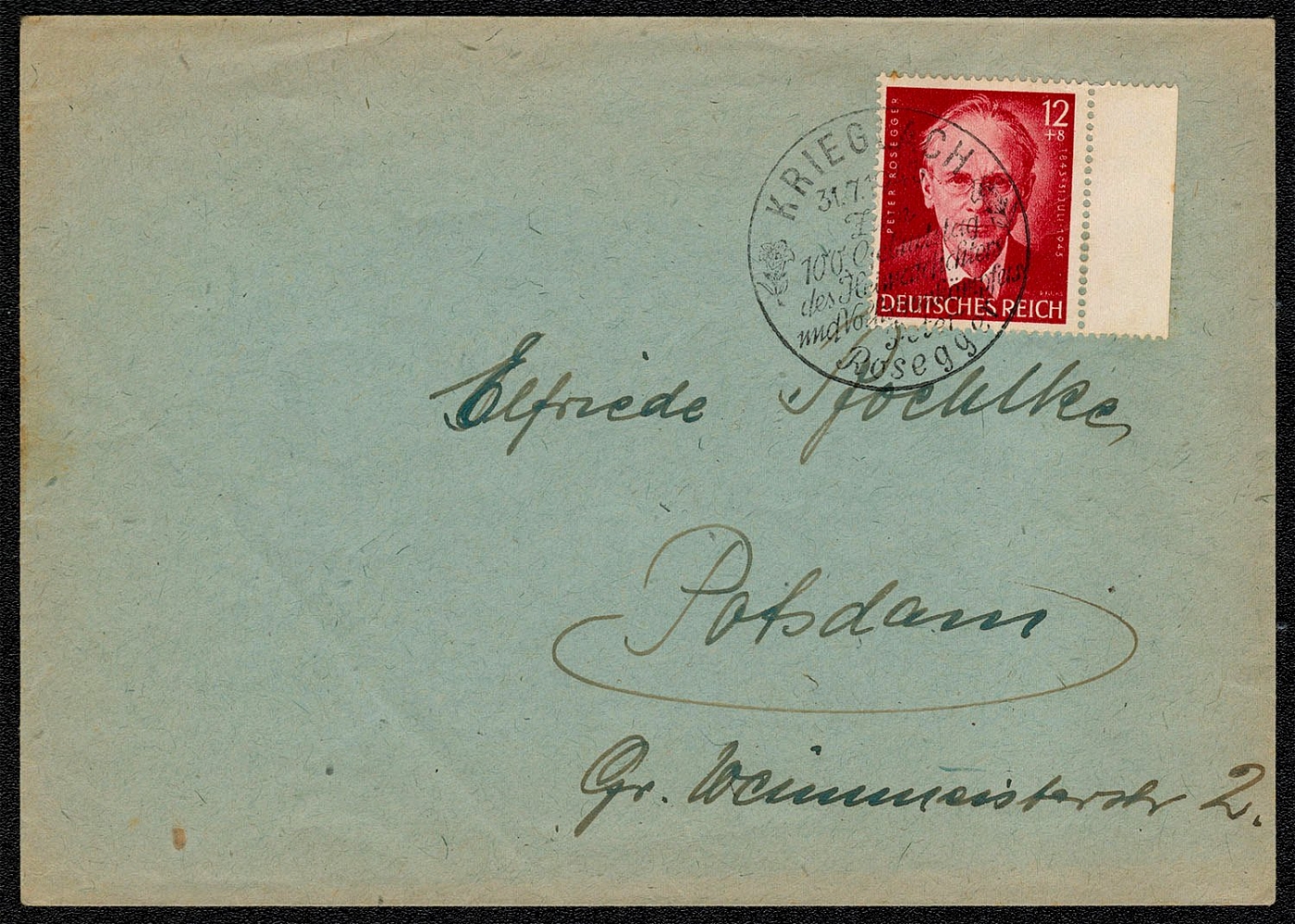
1943 Cover franked with Scott B242 with the special postmark
Cover franked with Scott B242 with the special postmark used to commemorate the centenary of the birth of Peter Rosegger. It translates, Hundredth birthday of writer of habits and folklore of the people - Peter Rosegger. It was used in Krieglach on 31 July 1943 only. A monument of Rosegger is located in Krieglach with the simple inscription Als ich Waldbauernbub war (When I was a forest farm boy).
Sold for:
$5
1002
-
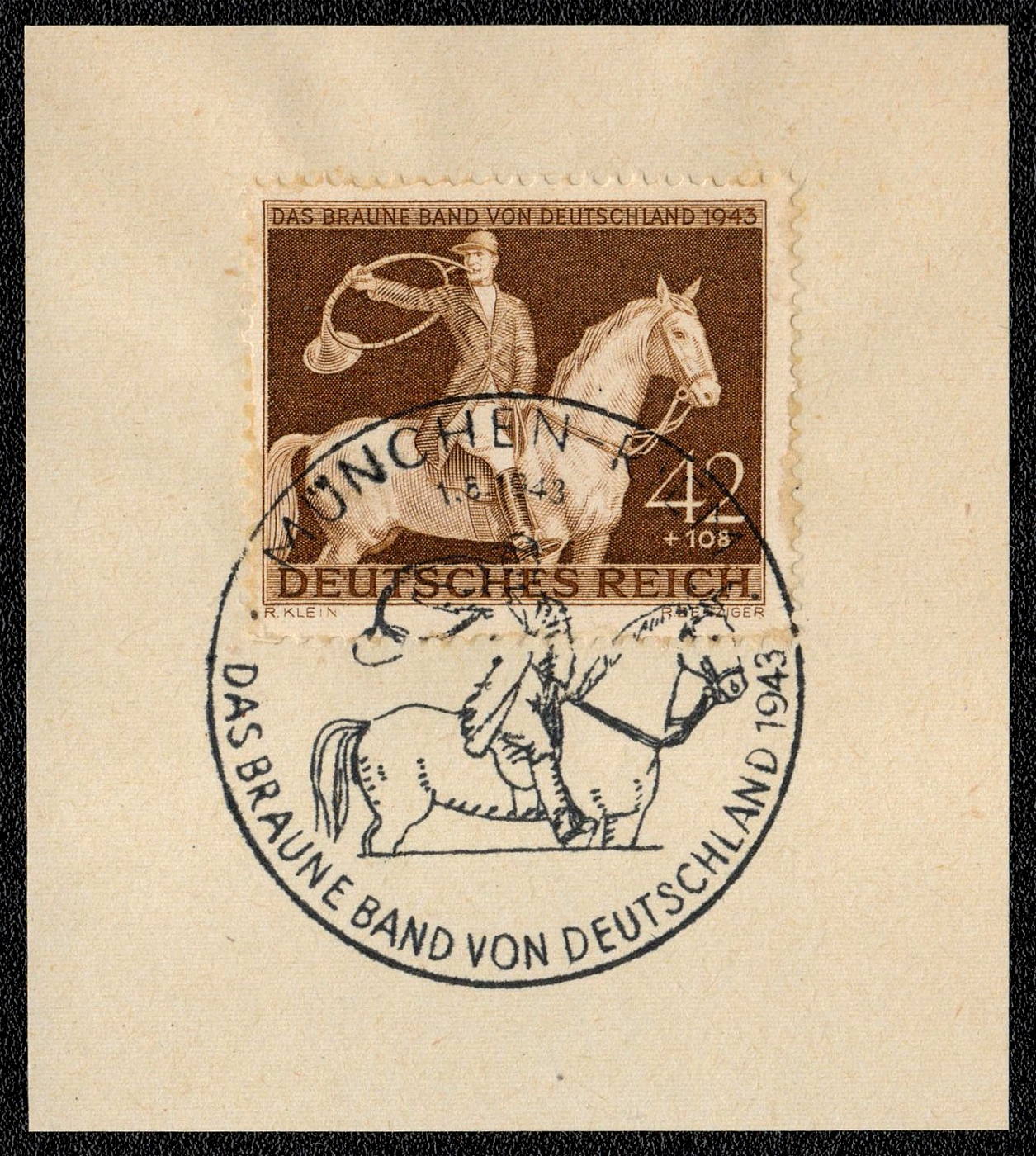
1943 The day of The Brown Ribbon of Germany
The special postmark on the “cut square” is nearly identical to the design of the stamp. It was used only on 8 August 1943, the day of The Brown Ribbon of Germany.
Unsold
1003
-
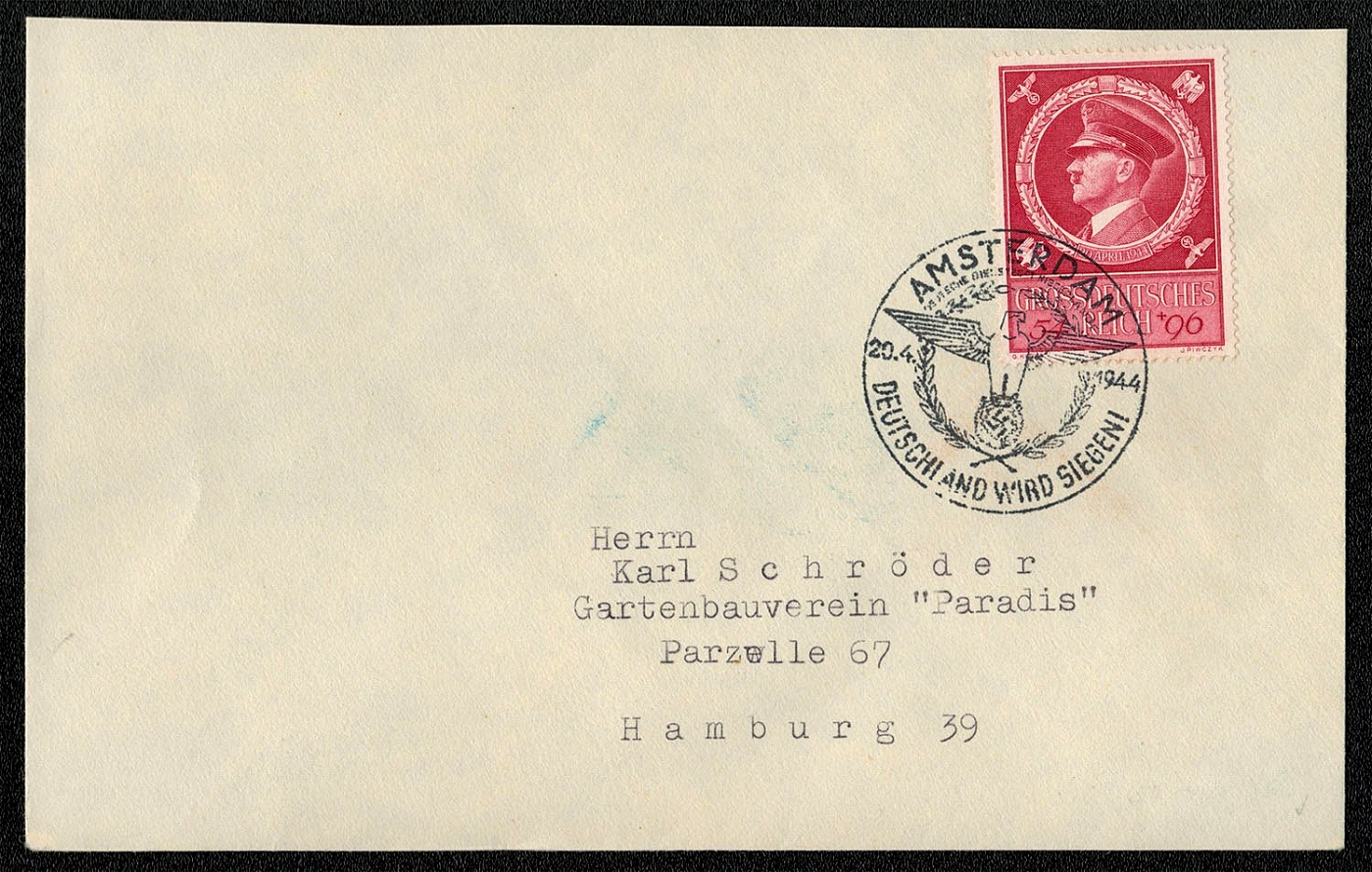
1944 Cover franked with Sc B27I. Postmarked in Amsterdam on 20 April
Philatelically prepared, but postally used cover franked with Sc B27I. Postmarked in Amsterdam on 20 April 1944. The slogan in the sonderstempel translates as Germany will be Victorious! The postmark was in use only on Hitler’s birthday, and only in Berlin, Braunau, Munchen, Nurnberg and Wien as well as Amsterdam. The cover was addressed to Karl Schroder of the Hamburg “Paradise” Horticultural Club.
Unsold
1004
-
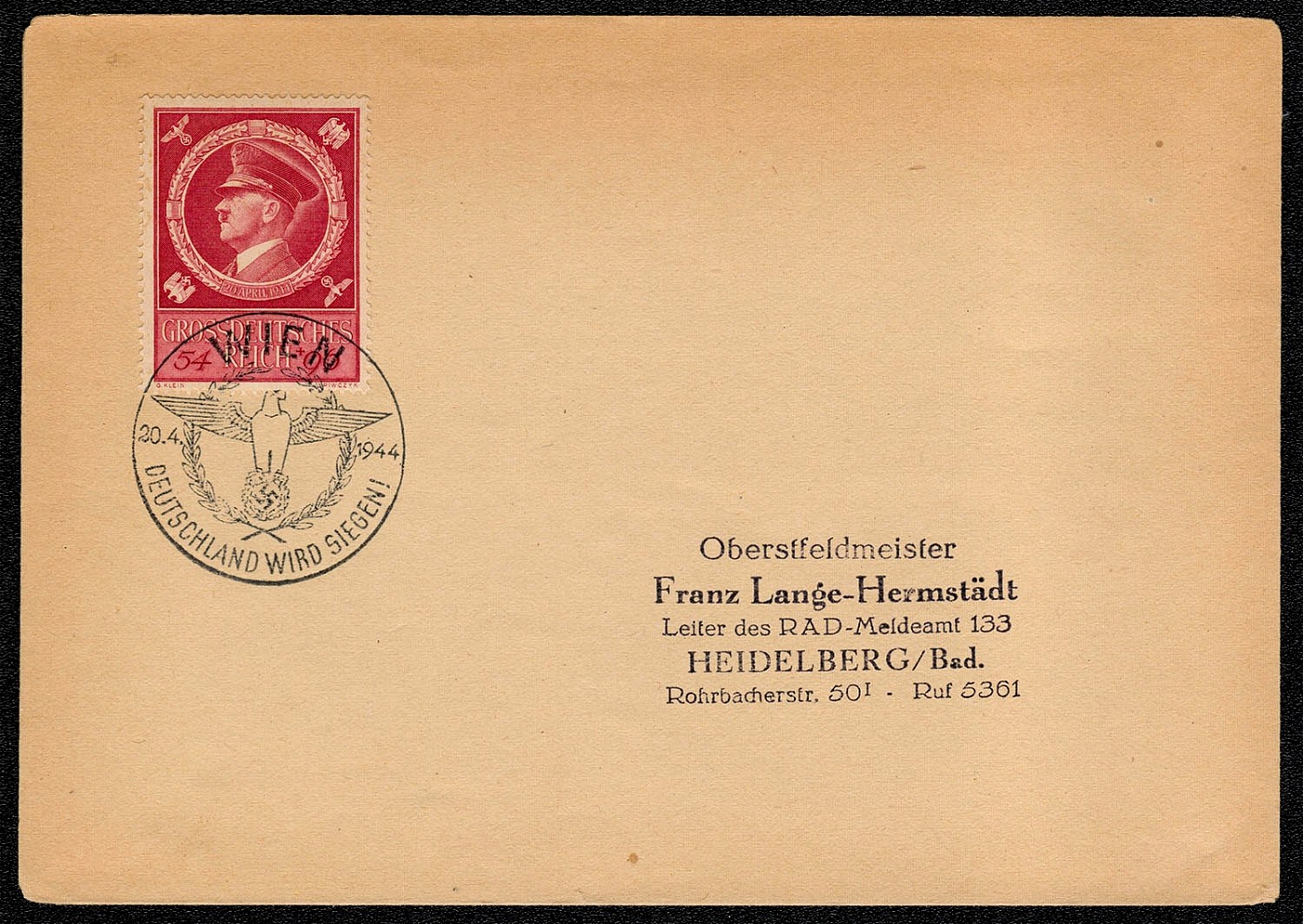
1944 Cover franked with Sc B27I. Postmarked in Wien on 20 April
Philatelically prepared cover franked with Sc B271. Postmarked in Wien on 20 April 1944. The slogan in the sonderstempel translates as Germany will be Victorious! The postmark was in use only on Hitler’s birthday, and only in Amsterdam, Berlin, Braunau, Munchen and Nurnberg as well as Wien. It is doubtful, that although properly addressed, this cover actually went though the mails. Oberstfeldmeister Franz Lange-Hermstadt, a Leader in the Heidelberg area Reichs Arbeit Deist. An RA
Unsold
1005
-
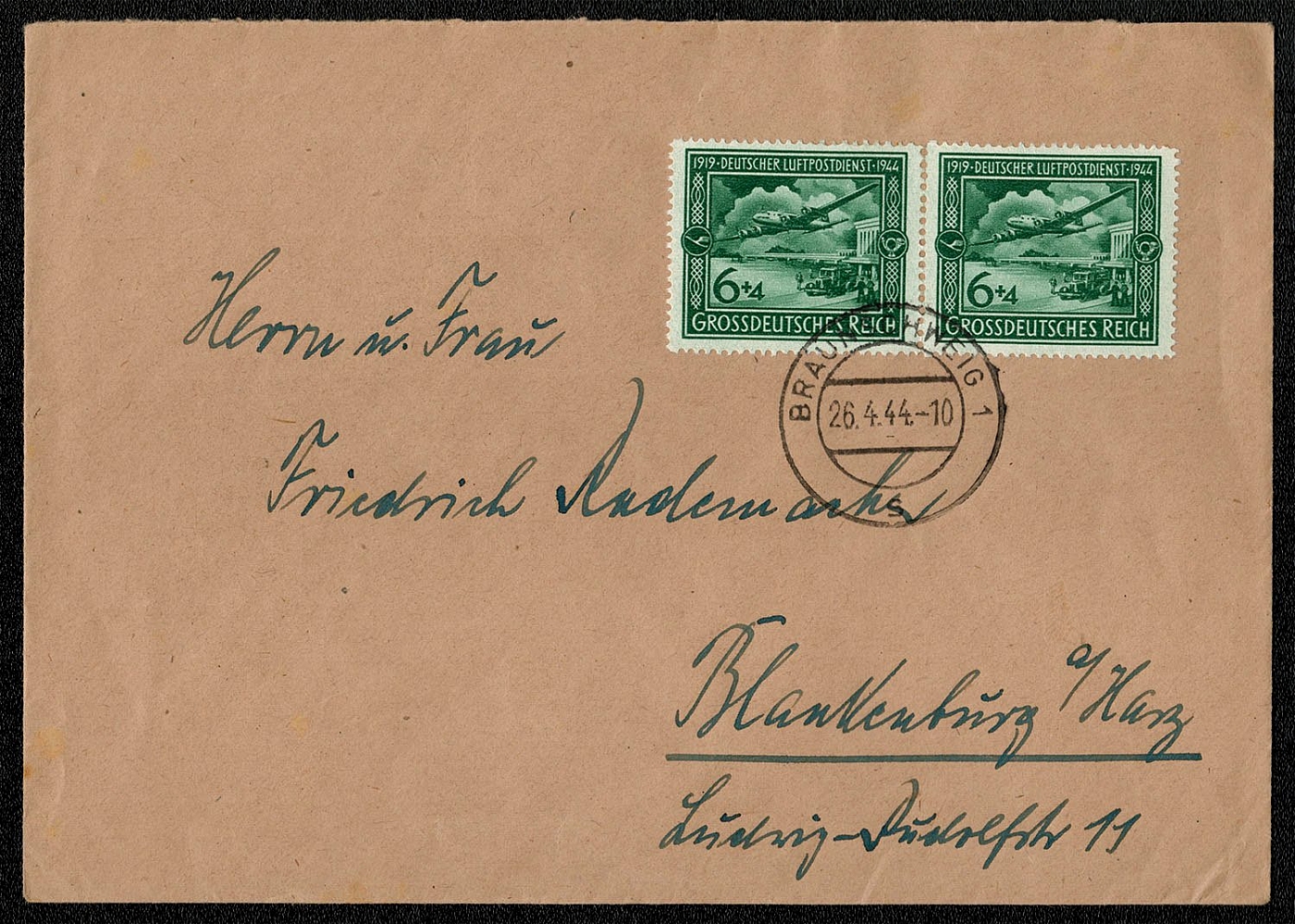
1944 Scott B252A (depicting a Focke-Wulf Condor FW 200 flying over an airport) postally used from Braunschweig
Scott B252A (depicting a Focke-Wulf Condor FW 200 flying over an airport) postally used from Braunschweig 1 on 26 April 1944 to Blankenburg in the Unter-Harz Mountains. Braunschweig, with a population of approximately 140,000 in 1944, lies on the Oker River, in a fertile plain bounded on the south by wooded hills. Its sausages, exported far and wide, need no further introduction.
Unsold
1006
$5
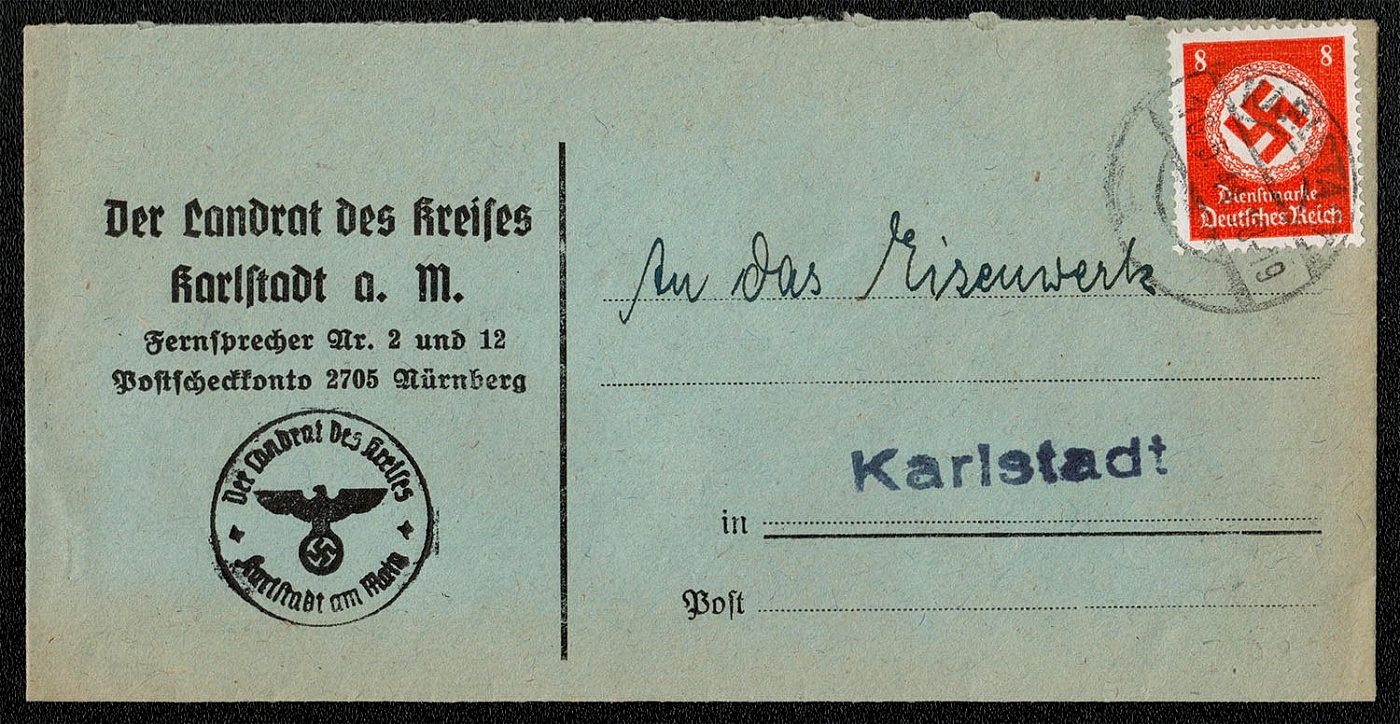
1944 Official mailing franked with Scott 096 from District Magistrate of Karlstadt on Main
The Official Stamp Issue of 1942/44 Official mailing franked with Scott 096 from District Magistrate of Karlstadt on Main on 10 May 1944. The corner card is primarily the street address, post office box, and telephone number of the official sender.
Sold for:
$5
1007
-
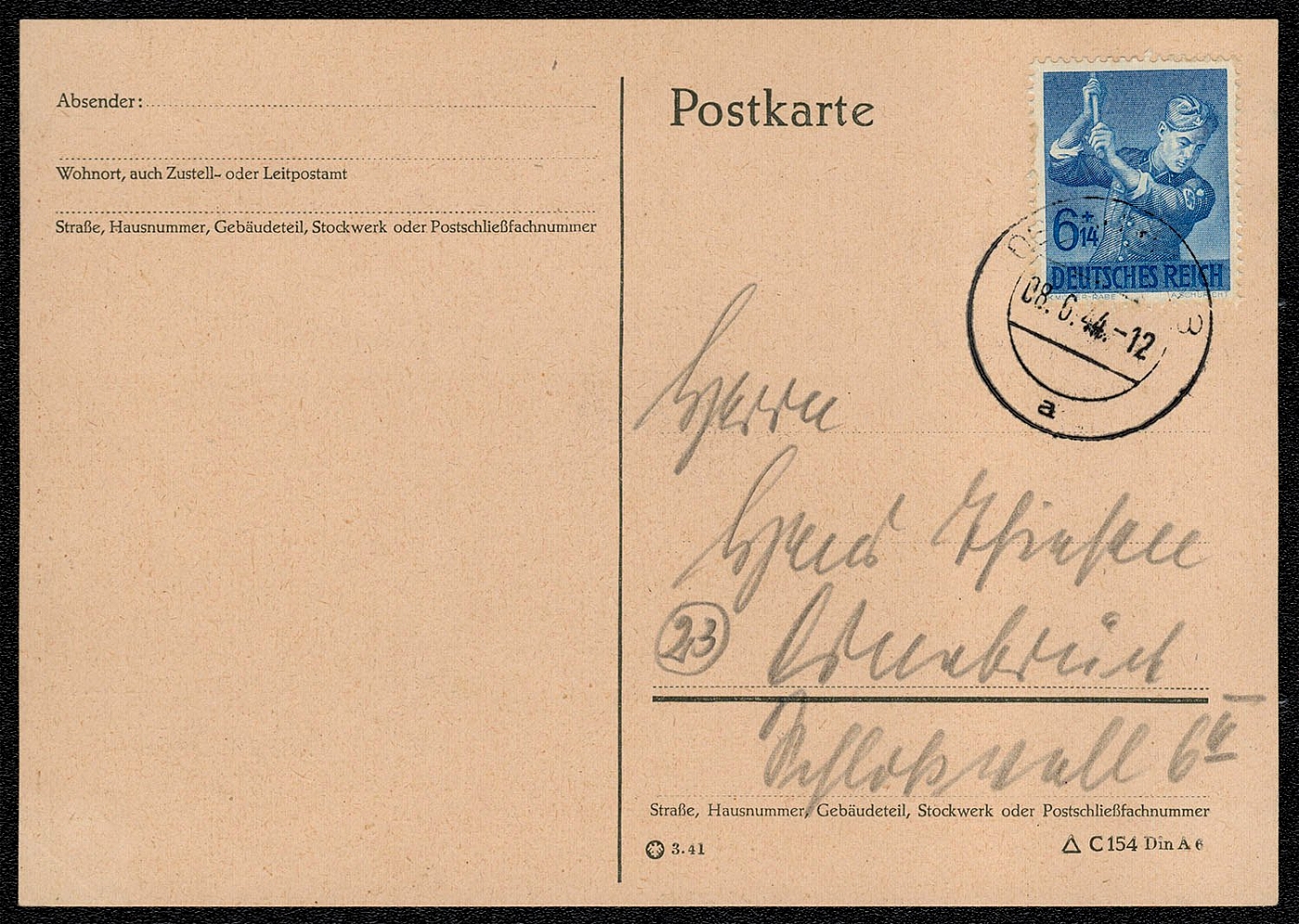
1944 Postcard franked with Sc B239 mailed on 8 June
A philatelically prepared (but postally used) card franked with Sc B239 mailed on 8 June 1944. City of origin unknown.
Unsold
1008
-
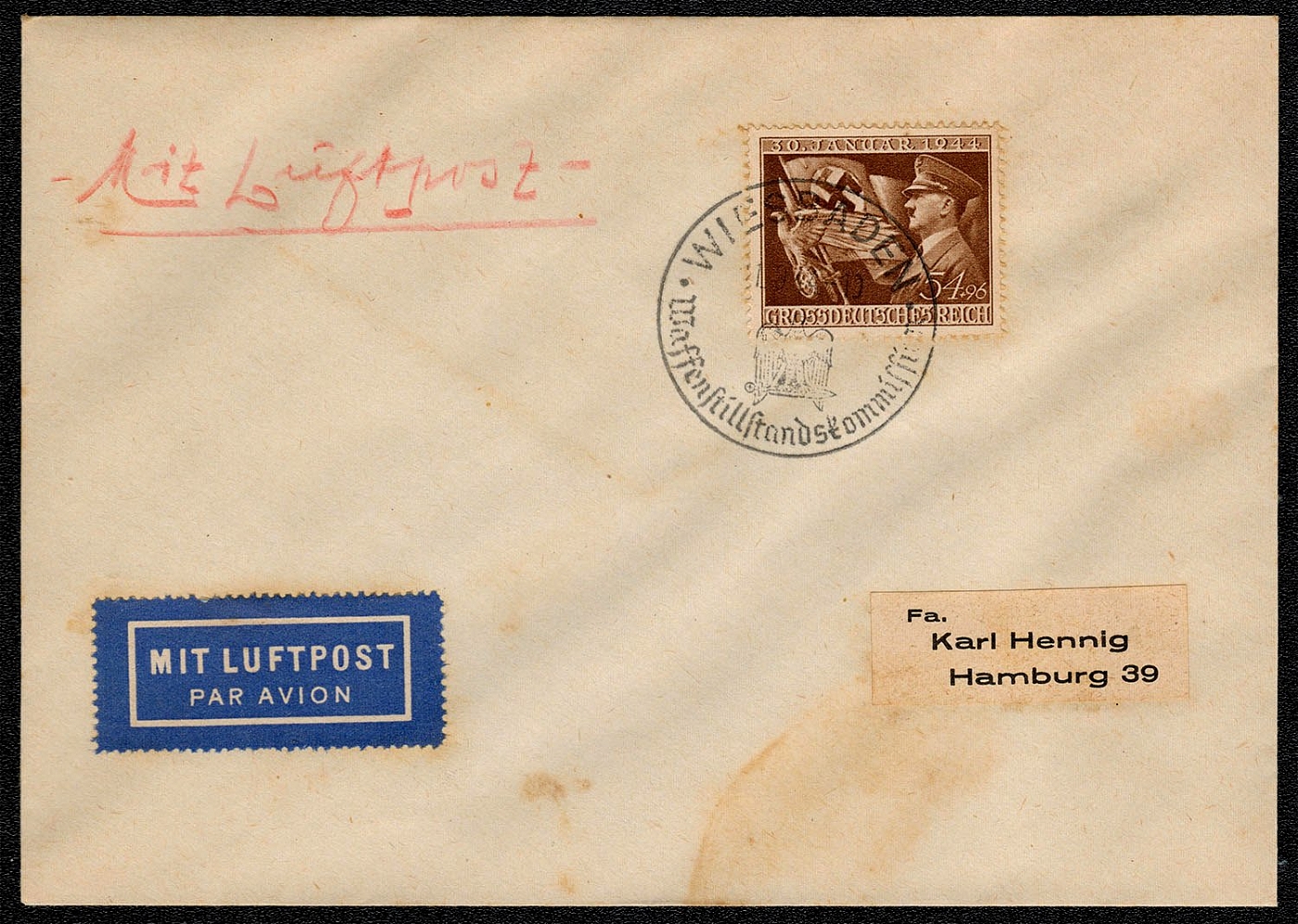
1944 Scott B252 on cover posted 26 June in Wiesbaden
Scott B252 on cover posted 26 June 1944 in Wiesbaden. The special cancel commemorates the Armistice Commission. At that time, Wiesbaden was in the Province of Hesse-Nassau, Prussia with a population of approximately 160,000.
Unsold
1009
-
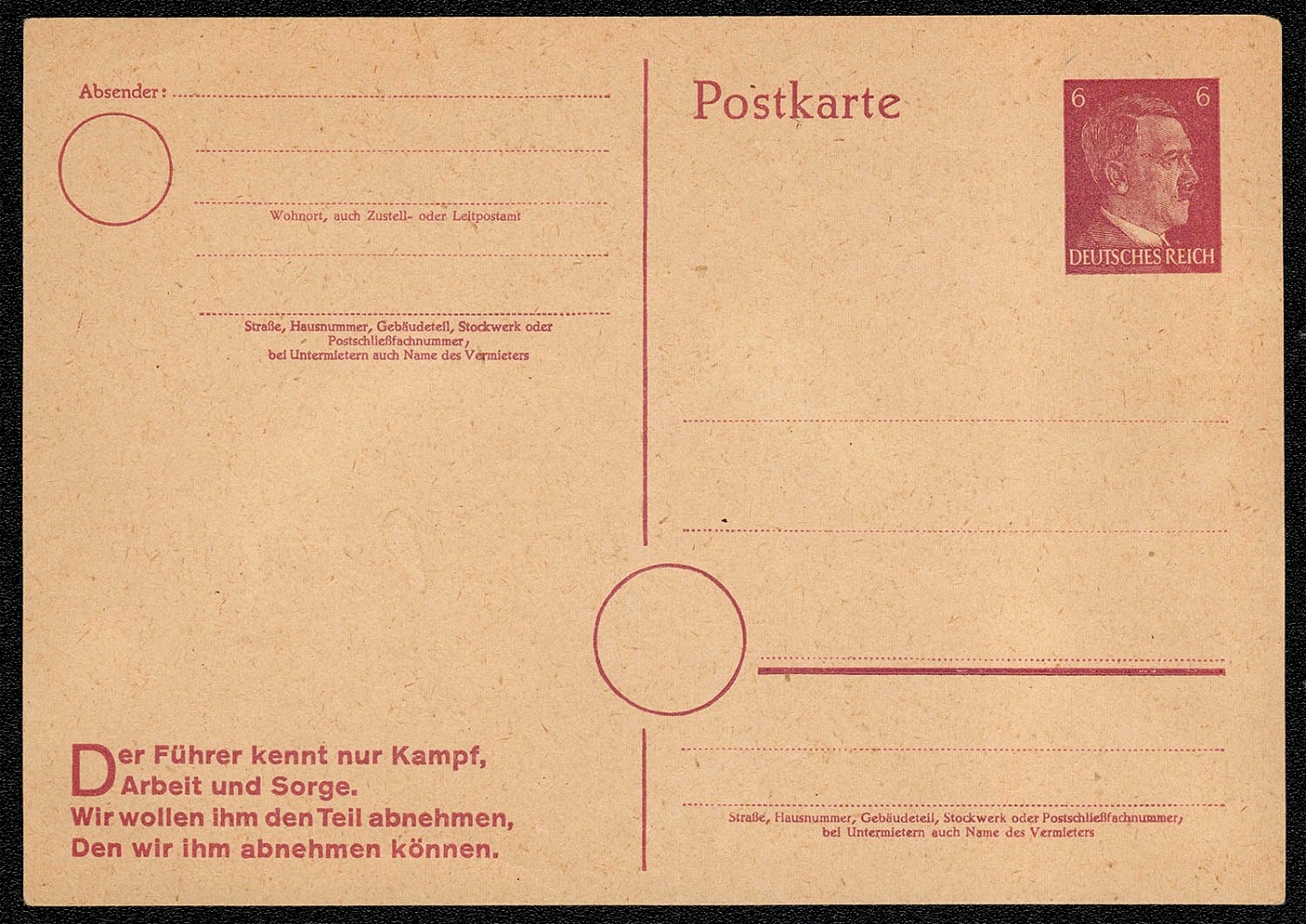
1944 Michel P 314 issued in late 1944
Michel P 314 issued in late 1944. The slogan translates: The Leader knows only struggle, work and anxiety. We wish to take from him that part of the burden we are able to take. Slogan postcards are official postal stationeries using Hitler head definitives with a variety of war slogans printed in the same color as the imprinted stamp. The issue began in August 1941.
Unsold
1010
-
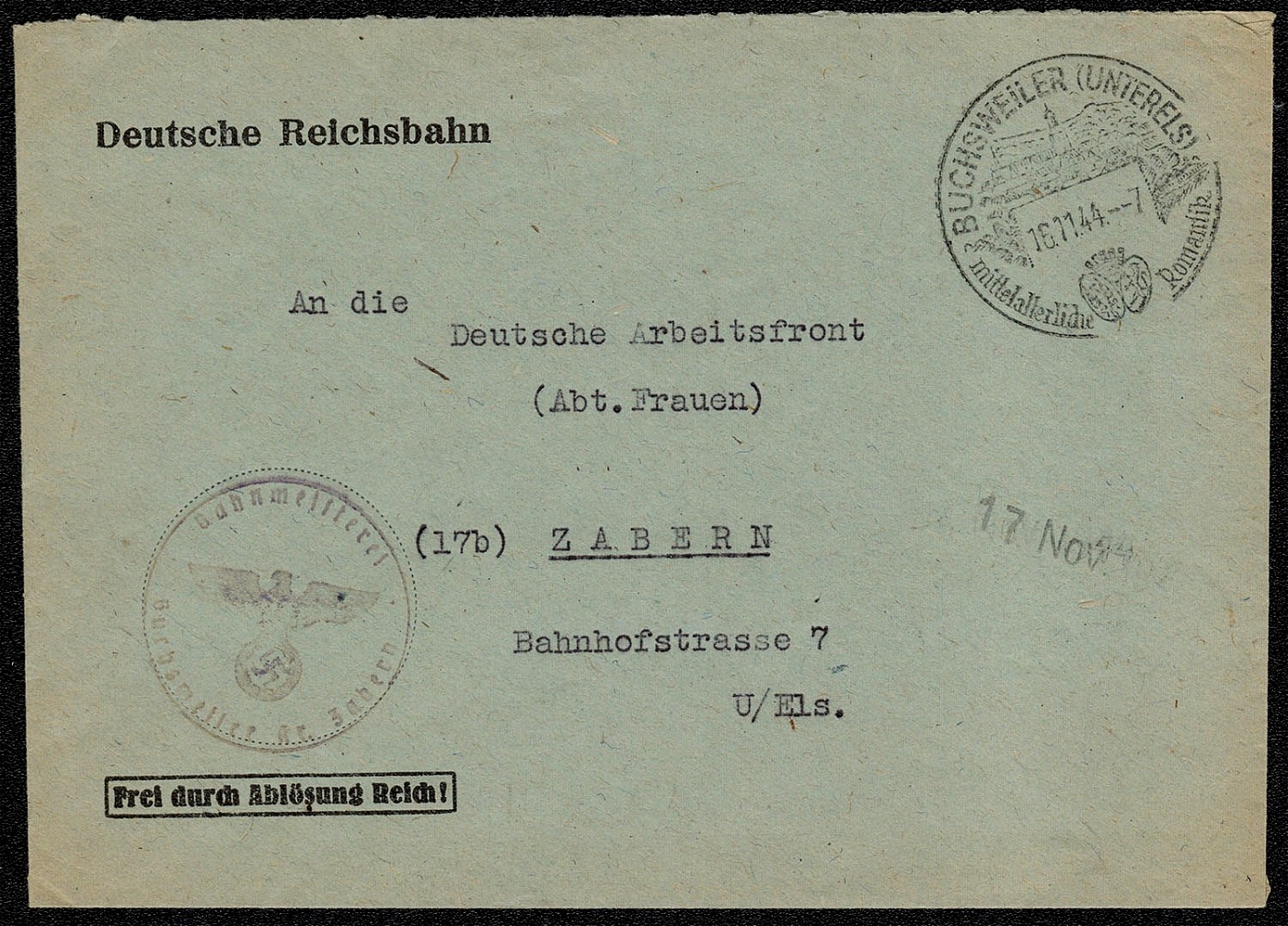
1944 Reichsbahn cover with free franking
"(Free throughout the Reich) Posted 16 November 1944 in Buchsweiler (Unterels) to the Deutsche Arbeitsfront Zabern. In 1944, Buchsweiler and Zabern (Bouxwiller and Saverne) were part of Grossdeutsches Reich (The Greater German Reich). Today they are in France. The special cancellation publicizes the mediaeval romanticism of Elsass-Lothringen (Alsace-Lorraine), the frontier region between Germany, France and Belgium that was taken by German forces in June 1940. In 1944, Patton’s advance from the Moselle was counter-attacked by the Sth Panzer Army on 18 September, but not long delayed. His 3rd Army resumed its advance into Lorraine, and besieged Metz which fell on 22 November. (Metz is about 50 miles northwest of Buchsweiler.) The 3""' Army then fought its way to the River Saar across which it secured beachheads by 15 December 1944. The above cover, then, was posted during a period of intense fighting, hardly a time when romanticism could be appreciated."
Unsold
1011
$5

1944 Kreis administrative offices cover with a lavender colored handstamp and free franking posted 20 November
A Kreis administrative offices cover with a lavender colored handstamp and free franking posted 20 November 1944 in Zabern (Els) to the Deutsche Arbeitsfront Kreiswaltung Zabern/Els. In 1944, Zabern (Saverne) was part of Grossdeutsches Reich (The Greater German Reich). Today it is in France. The special cancellation Luftkurort in Herrlicher Lage publicizes Zabern (Els) as a climatic health resort in a marvelous location. Patton’s 3rd Army besieged Metz which fell on 22 November. (Metz is about 50 miles northwest of Zabern.) The 3rd Army then fought its way to the River Saar across which it secured beachheads by 15 December 1944. The above cover was therefore posted during a period of intense fighting, hardly a time when a health resort could be appreciated. The symbolic meaning of the unicorn is not known at this time.
Sold for:
$5
1012
-
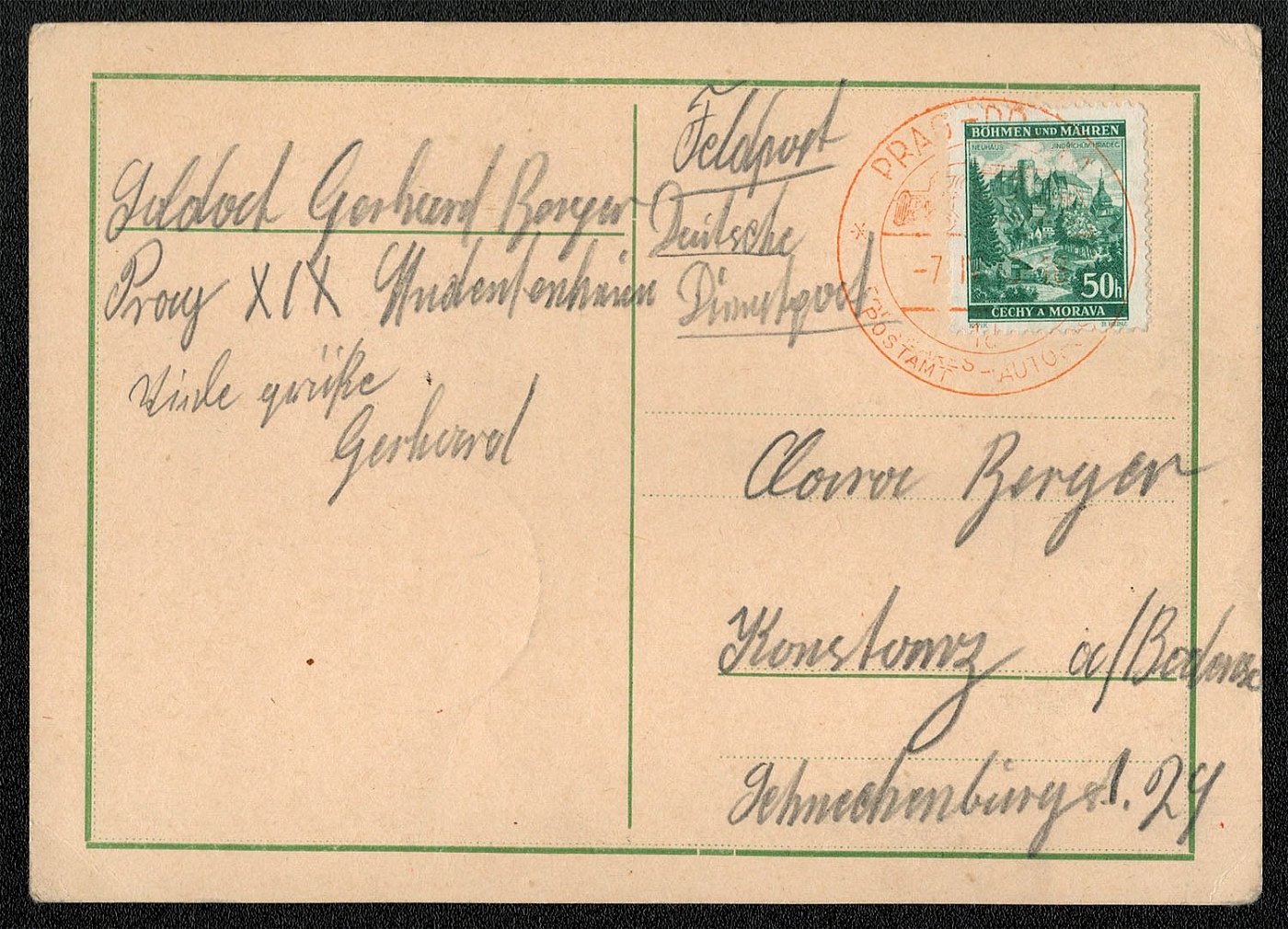
1940 Postcard sent through the Official German Field Post. Franked with Mi 39. Mailed from Prag
Philatelically prepared post card sent through the Official German Field Post. Franked with Mi 39. Mailed from Prag on 7 April 1940.
Unsold
1013
-
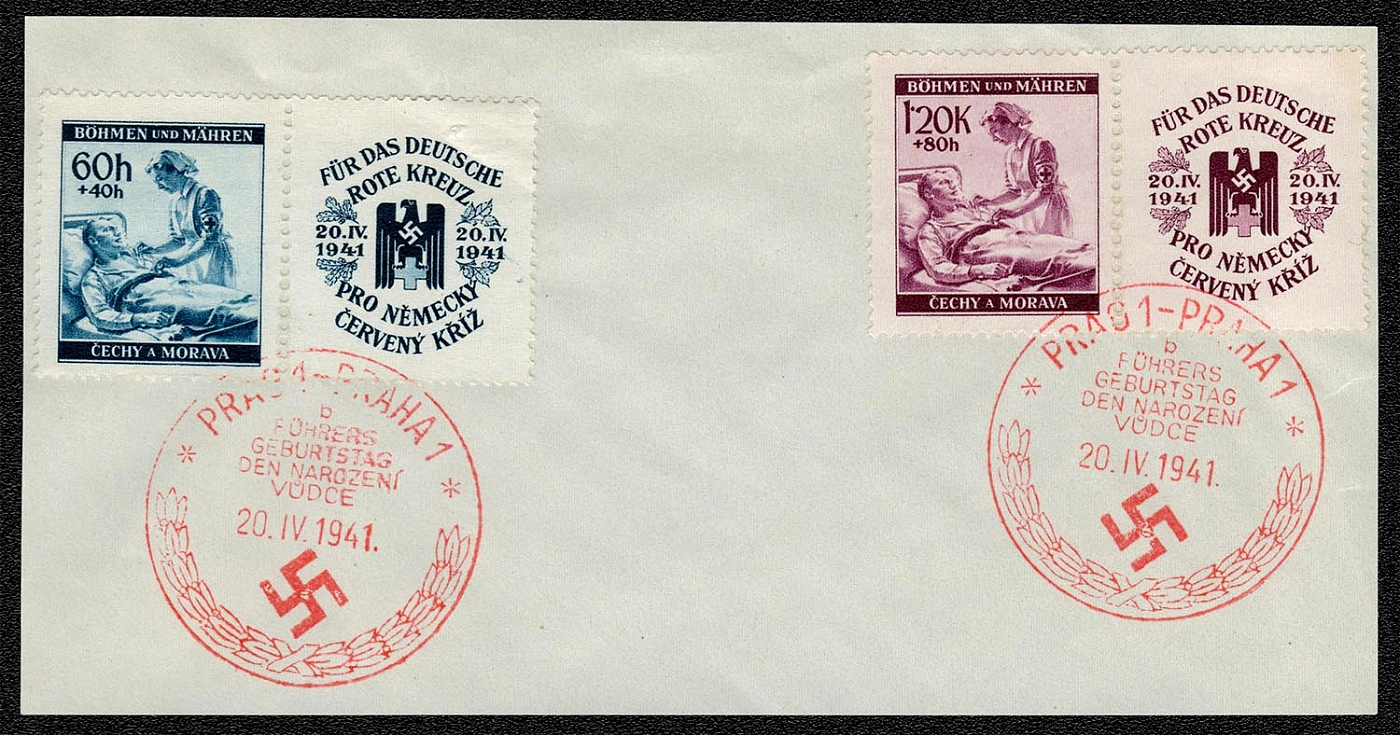
1941 Bohemia and Moravia First Day souvenir sheetlet with Special postmark Hitler’s 52nd birthday
First Day souvenir sheetlet with Zierfeld (ornamental labels) and Sondersteinpel commemorating Hitler’s 52nd birthday. Postmarked Prag, 20 April 1941.
Unsold
1014
$5
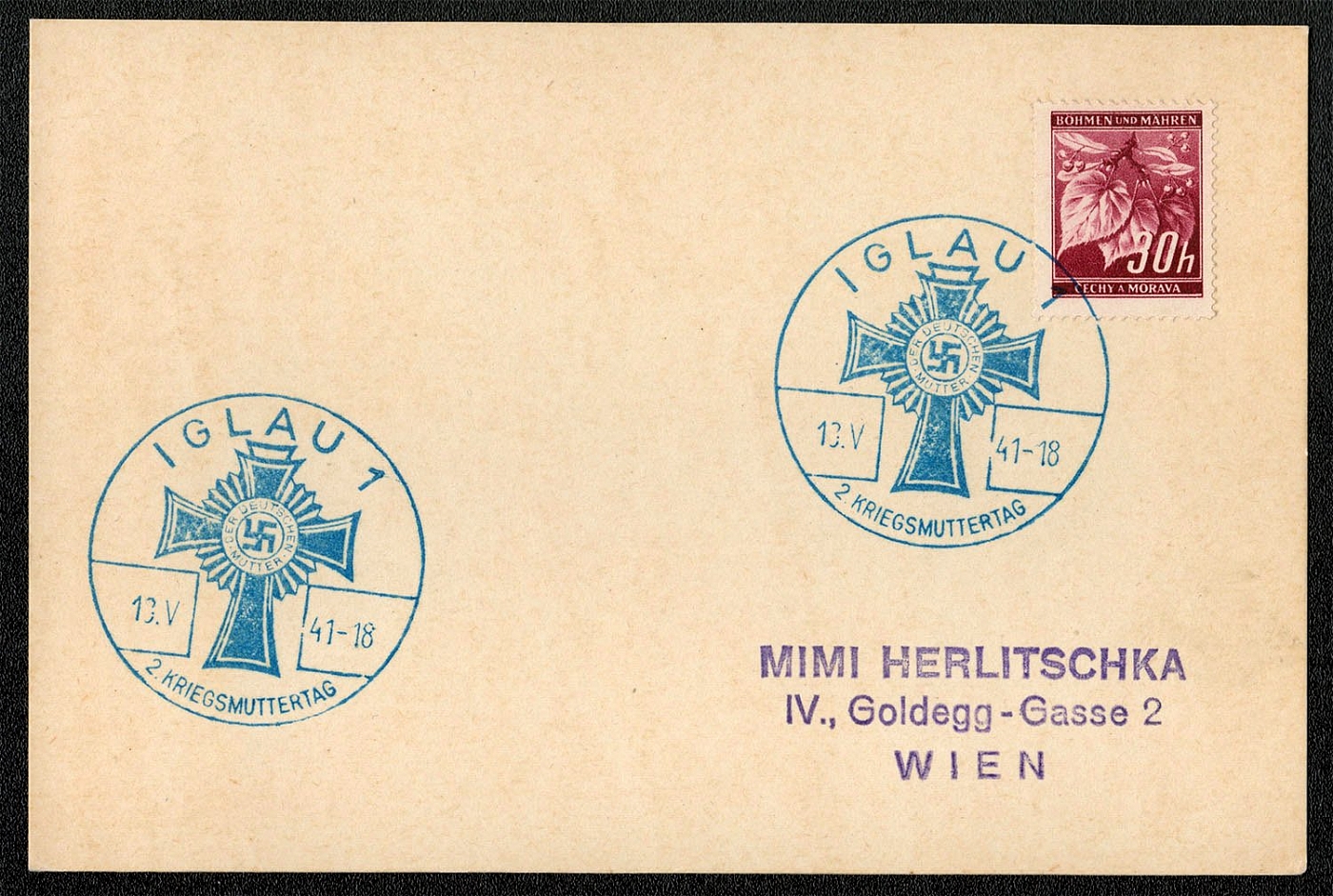
1941 Bohemia and Moravia Souvenir card franked with Scott No. 24 cancelled in Iglau
Souvenir card franked with Scott No. 24 cancelled in Iglau on 18 May 1941. The special cancel commemorates the second “War Mother’s Day.” Iglau was a mining and commercial center in Moravia with a 1940 population of 31,031.
Sold for:
$5
1015
-

1941 Bohemia and Moravia Generic postcard franked with 5 and 40 haleru values of the 1939-41 definitive series
Generic postcard franked with 5 and 40 haleru values of the 1939-41 definitive series. Postmarked 8 May 1941, Pardubitz.
Unsold
1016
-
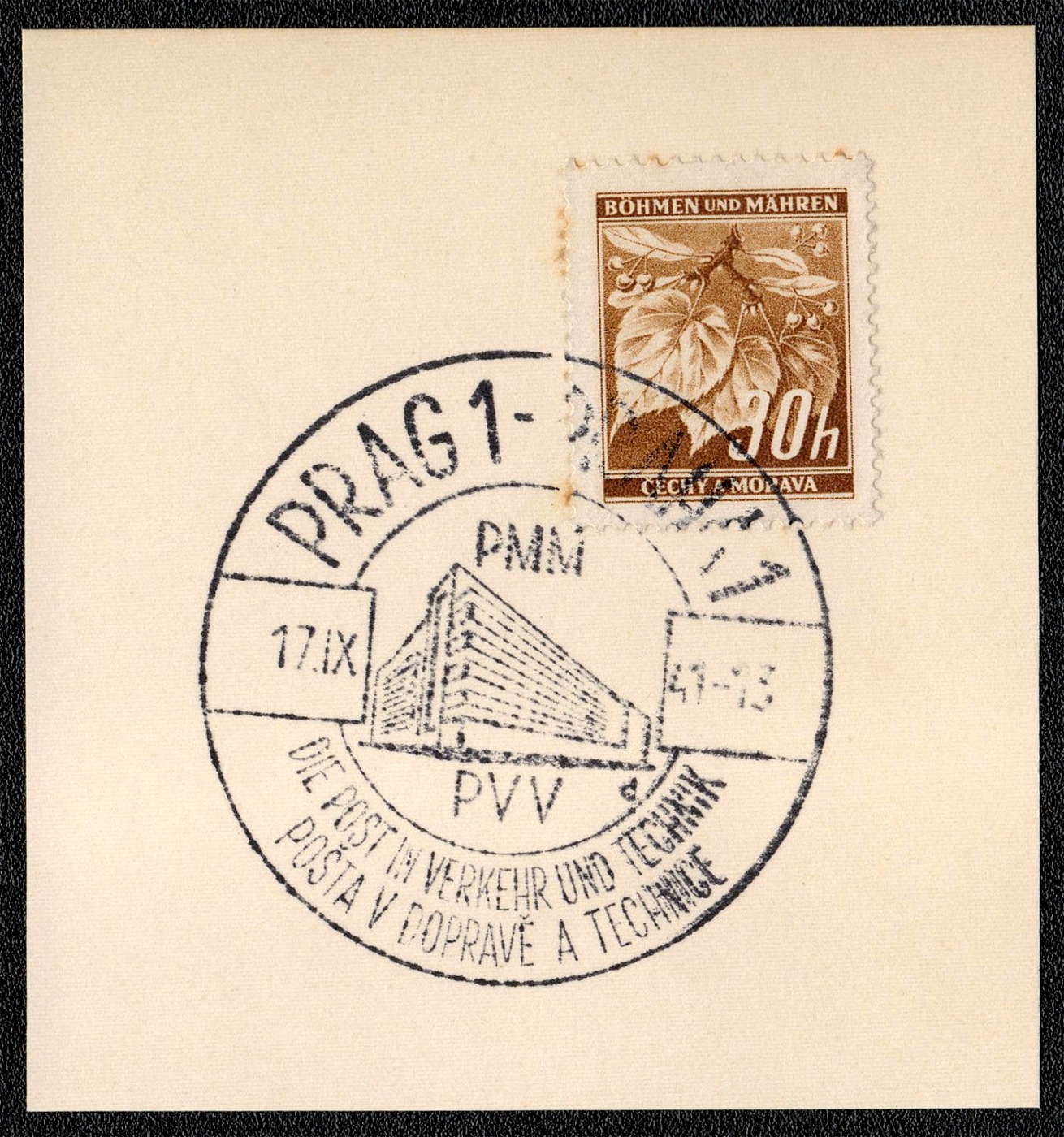
1941 Bohemia and Moravia Special Cancellation for the Prag Fair, 7-14 September
Special Cancellation for the Prag Fair, 7-14 September 1941. DIE POST IN VERKEHR UND TECHNIK (The Post in Trade and Technology)
Unsold
1017
$5
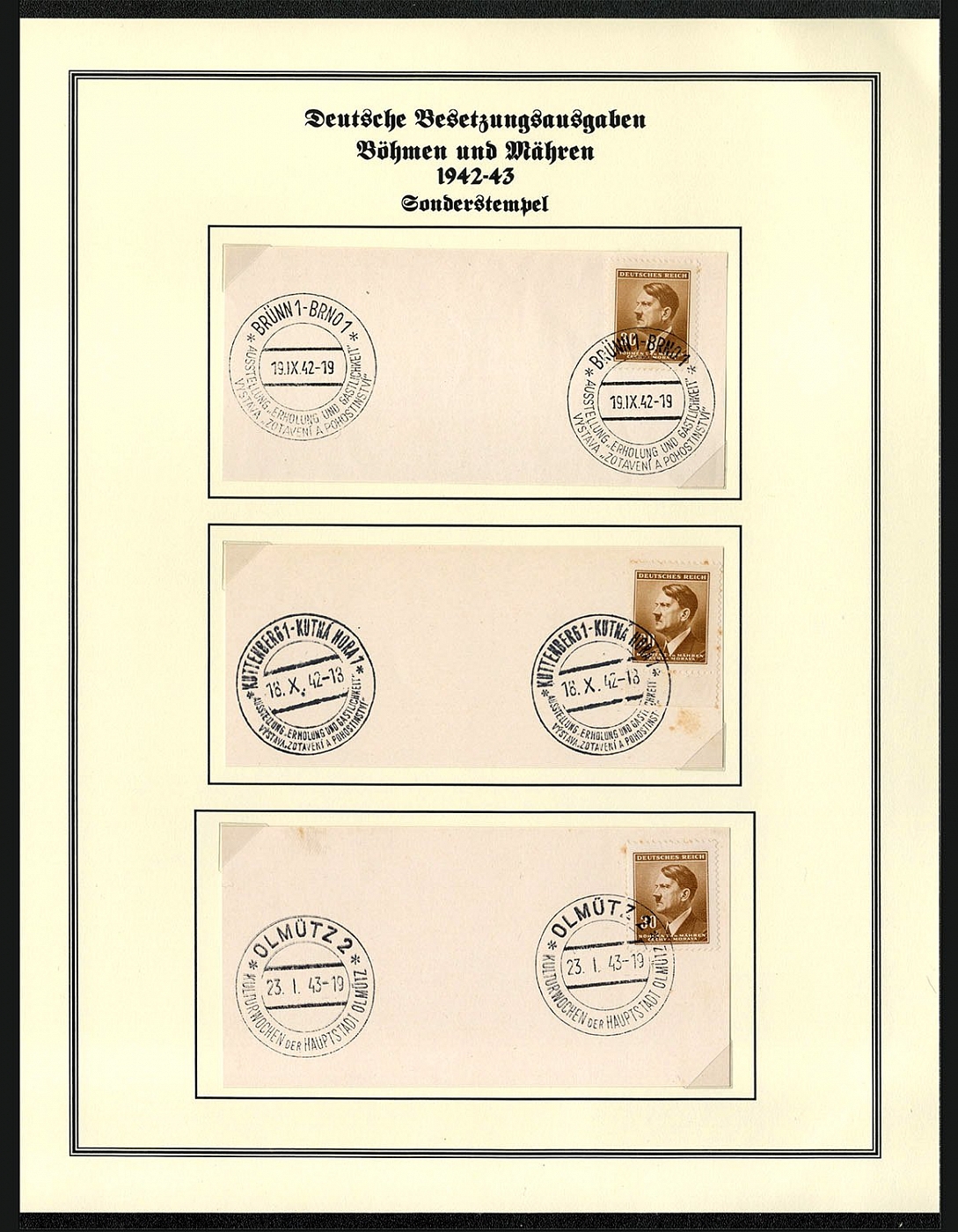
1018
-
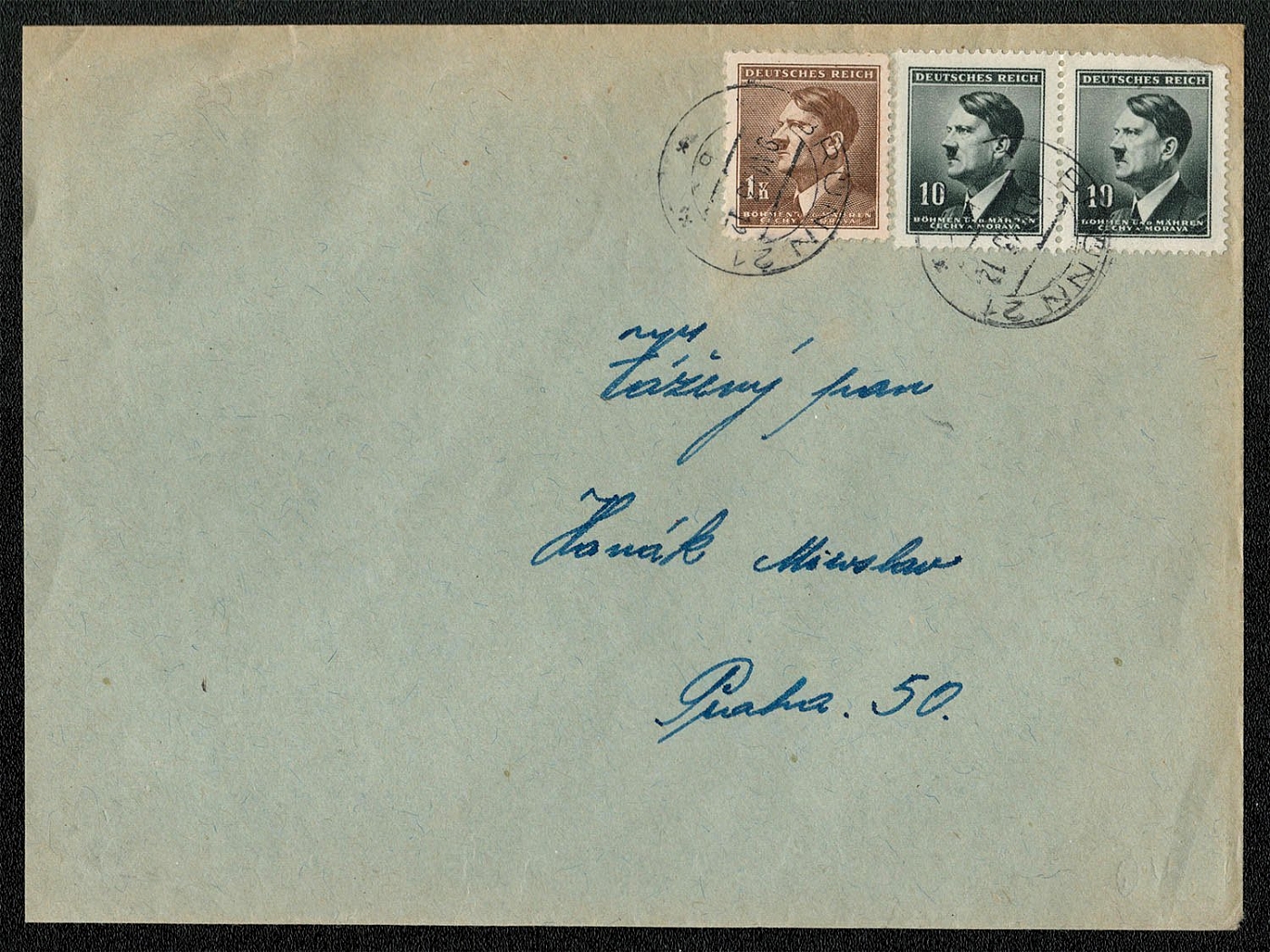
1941 Bohemia and Moravia Cover franked with a pair of Scott No. 62 and a single No. 68
Cover franked with a pair of Scott No. 62 and a single No. 68. Posted in Brunn (Brno), Bohmen und Mahren, 9 July 1943. Briinn (Brno) was the capital of Moravia, with an estimated population of 288,000 in the early 1940s. It lies at the confluence of the Schwarzawa and the Zwittawas Rivers. Among the more interesting pre-war buildings were the Cathedral of St. Peter and St. Paul, built in the fifteenth century. St. James, a Gothic church. the Museum of Industrial Arts, and a polytechnic institute. Briinn dates back to the ninth century, and has stood some famous sieges.
Unsold
1019
$20
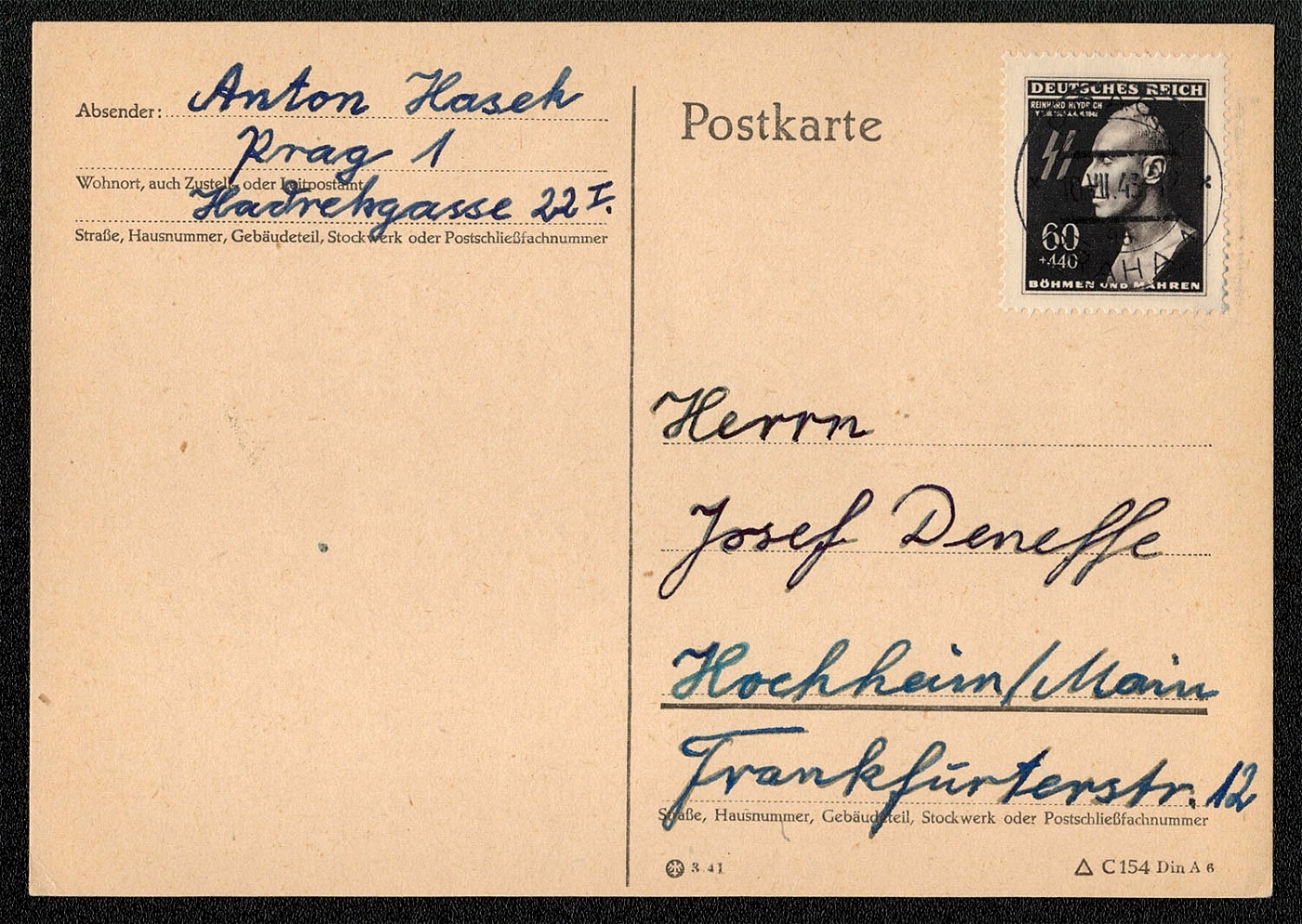
1943 Sc B20 postally used 10 July Mailed from Postamt 1 Prag to Hochheim am Main
Sc B20 postally used 10 July 1943. Mailed from Postamt 1 Prag to Hochheim am Main.
Sold for:
$20
1020
$5
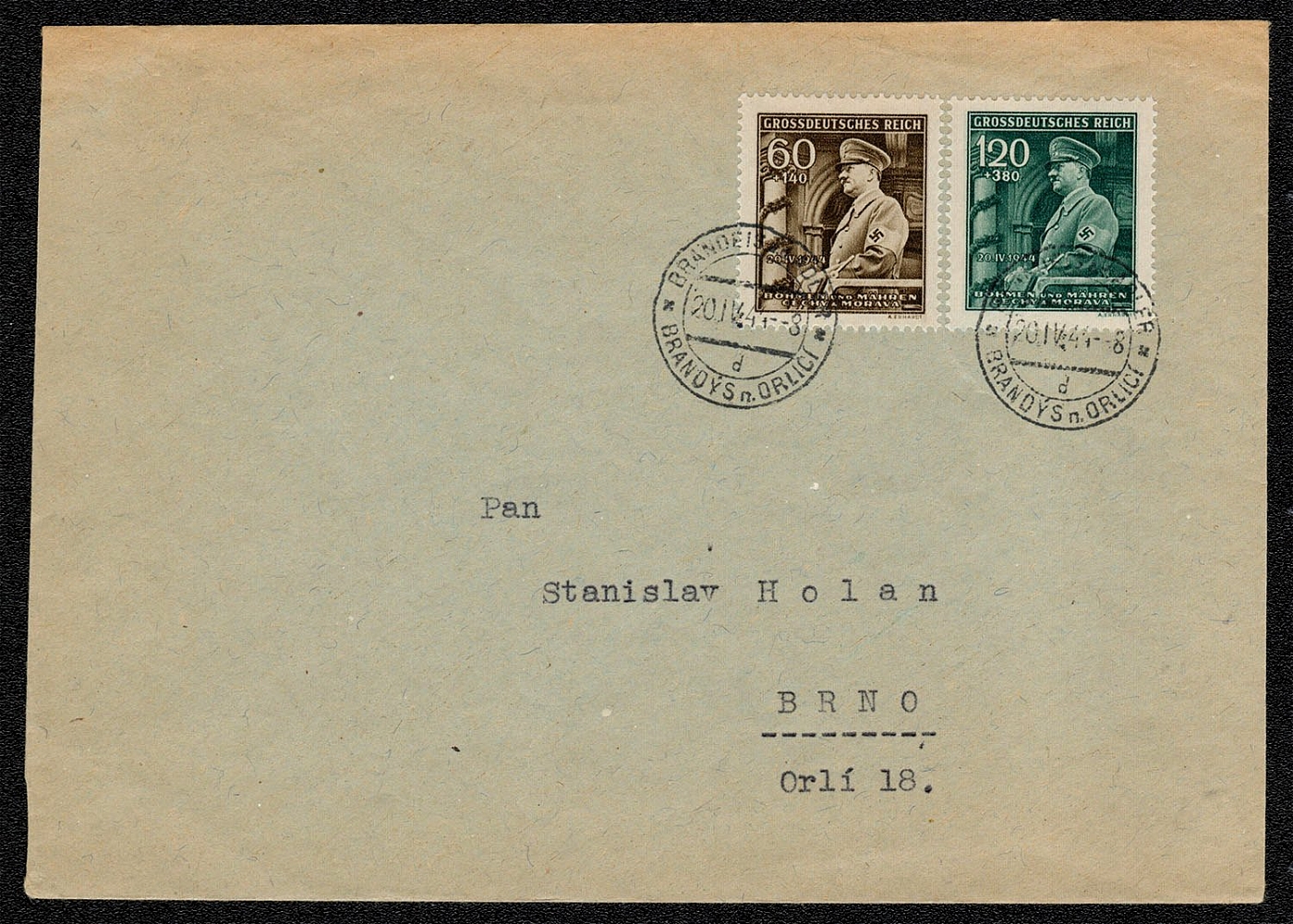
1944 Cover was cancelled on 20 April Issued to commemorate Hitler’s 55,h birthday
Issued to commemorate Hitler’s 55,h birthday. The postally used cover was cancelled on 20 April 1944 (the first day of issue) in Brandeis, Orli.
Sold for:
$5
1021
-
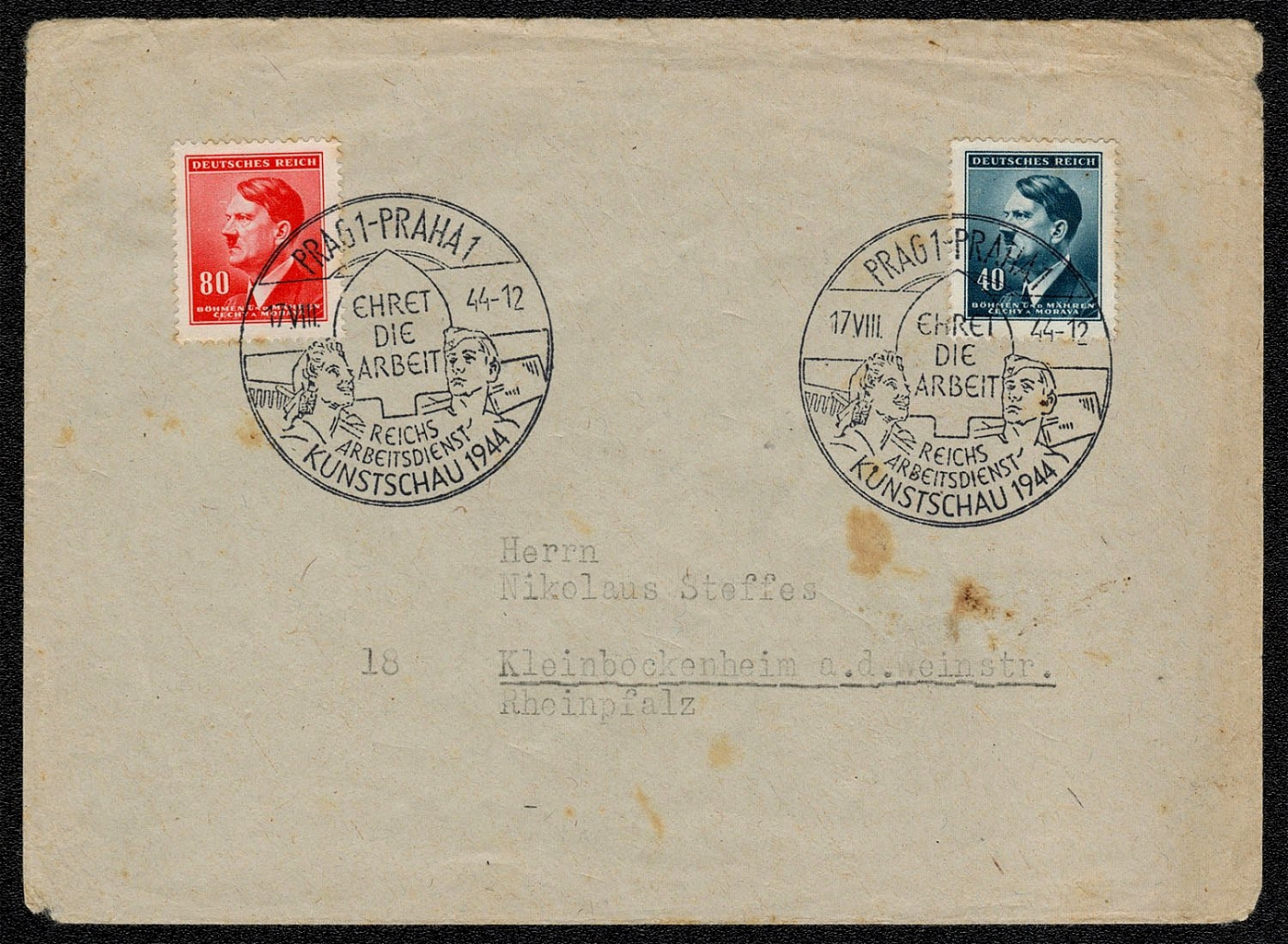
1944 Bohemia and Moravia cover franked with Sc 64 and 67. Posted 17 August
Cover philatelically prepared by Paul Kuhrt’s “Die Deutsche Briefmarkenhandlung” The German Postage Stamp Shop. Franked with Sc 64 and 67. Posted 17 August 1944 in Prag. The Werbestempel (publicity slogan cancellation) promotes the 1944 Reichsarbeitsdiest Kunstschau (National Labor Service Art Show).
Unsold
1022
-
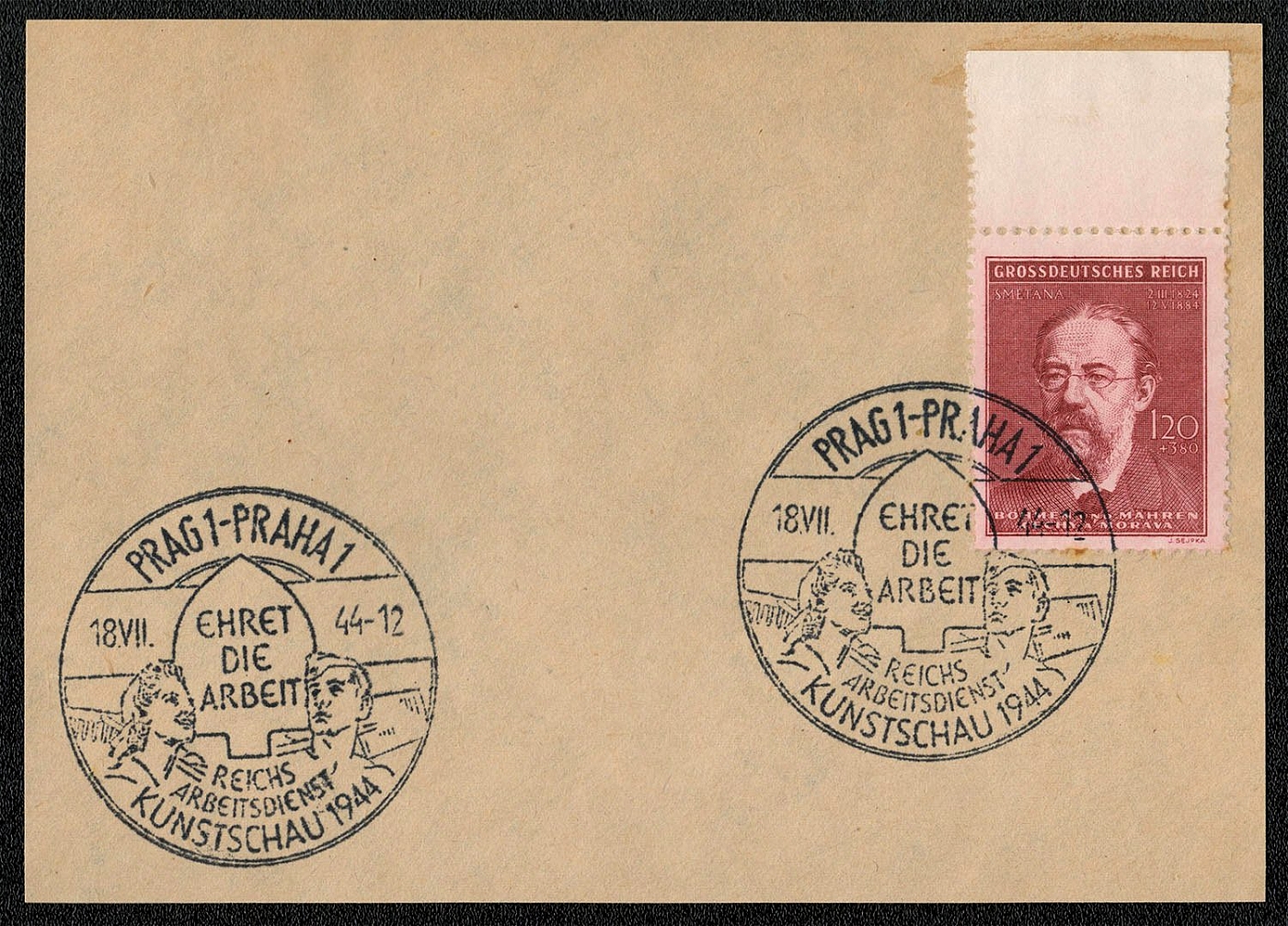
1944 Bohemia and Moravia National Labor Service Art Show
National Labor Service Art Show In June 1944 the Reichsarbeitsdiest sponsored an exhibition of arts and crafts by members of the Labor Service. There was no special postmark for the exhibition in Germany. When the exhibit moved to Prag, however, both a special postmark and an advertising slogan were used from 11 through 18 August. The Werbestempel (publicity slogan cancellation) dated 17 August 1944 was applied to Scott B28 at that show. The slogan in the cancellation EHRET DIE ARBEIT translates as Honor the Work.
Unsold
1023
-
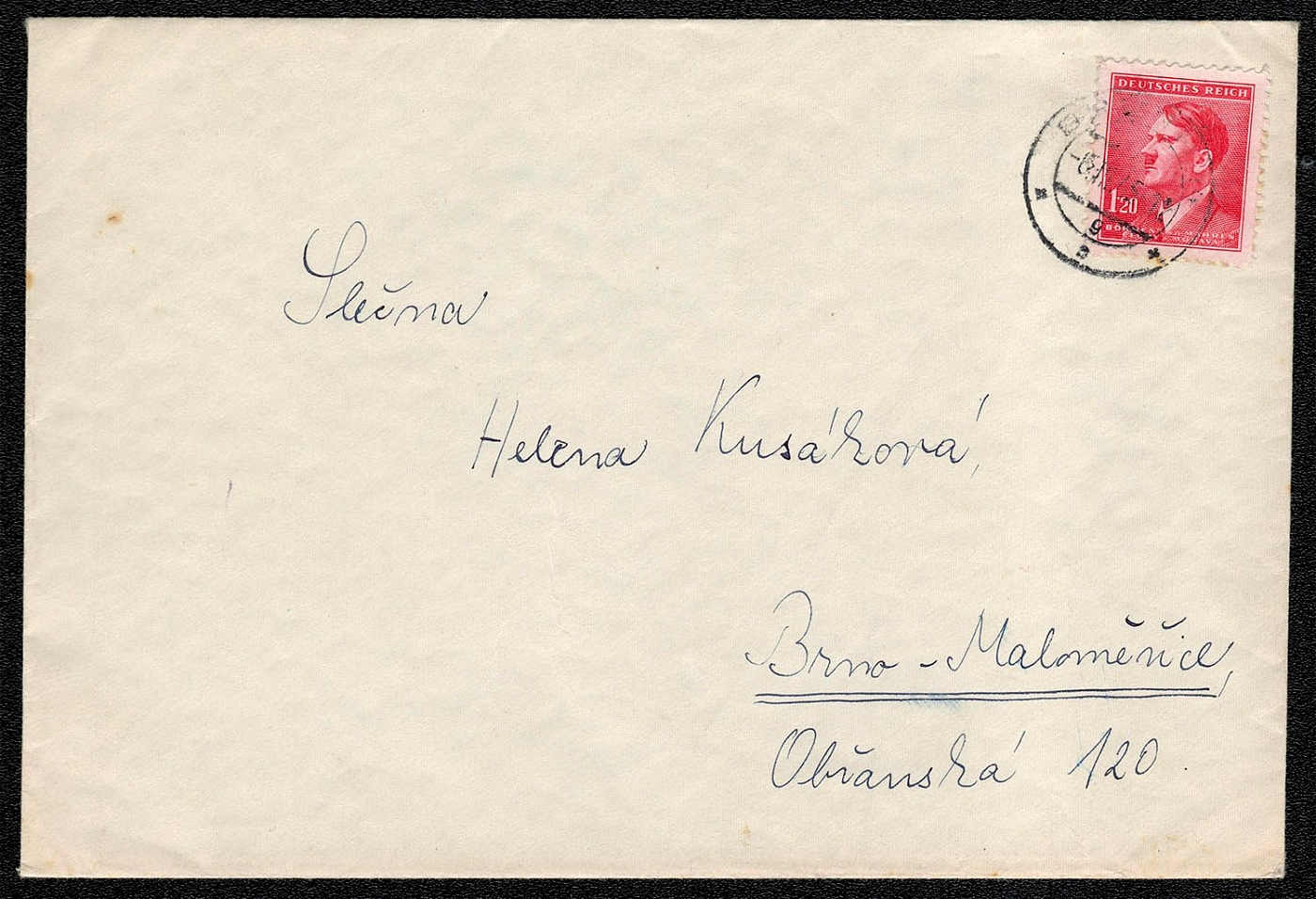
1945 Bohemia and Moravia cover franked with Scott 69
Civilian cover franked with Scott 69 (Michel 96) and posted in Brunn (Brno), Bohmen und Mahren 6 March 1945. On 5 May, two months after this cover was mailed, Russian forces captured Brunn. S Germany surrendered unconditionally in Rheims, France on 7 May. Nonetheless, the last remaining major concentration of German forces, those in Bohmen und Mahren under the command of Feldmarshall Ferdinand Schorner, continued to fight in and around Prag. It was hopeless, however, and that city fell on 9 May. On 11 May, the last German units surrendered.
Unsold
1024
$5
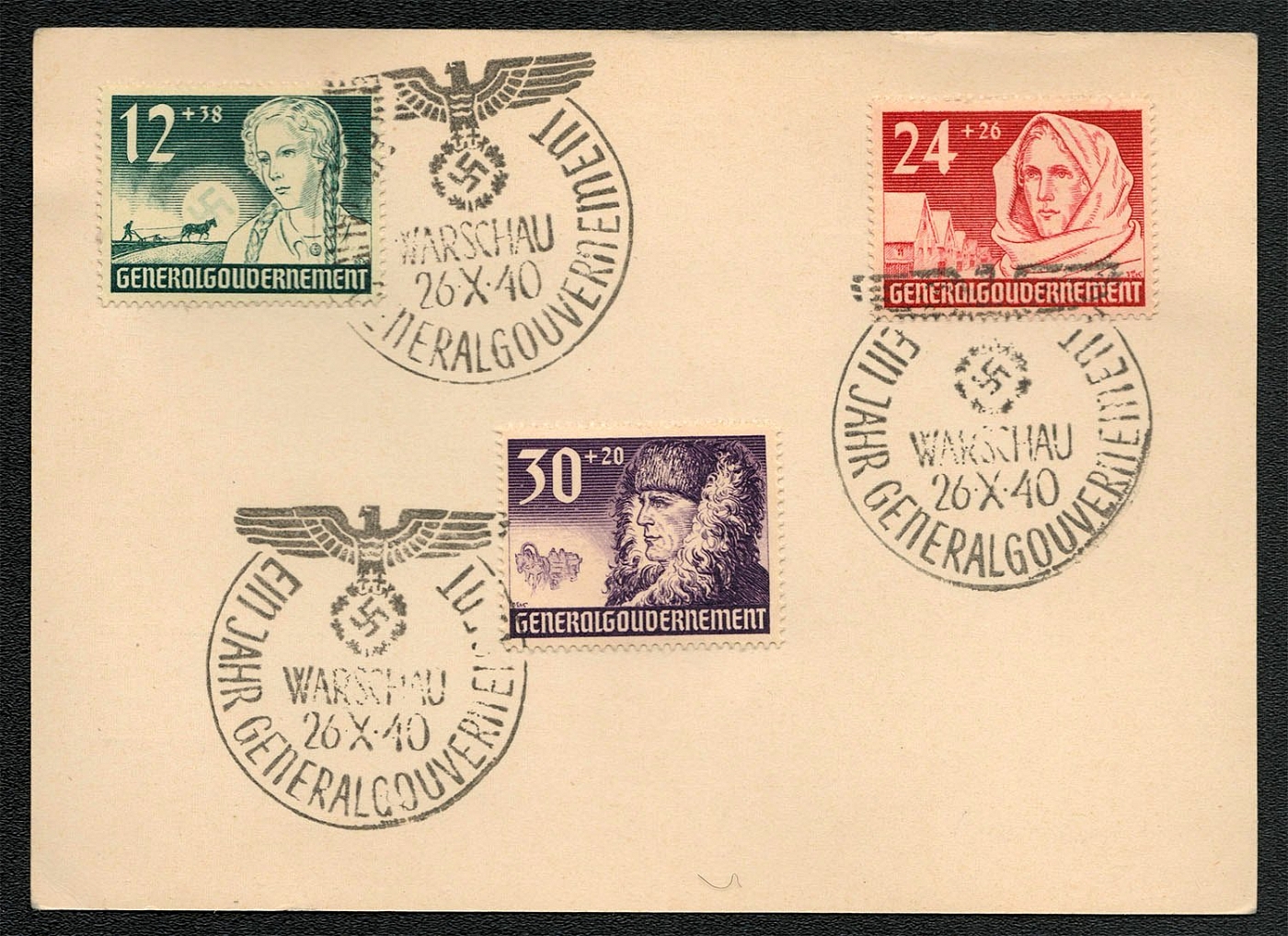
1942 Souvenir card franked with Scott Nos. B5-7, postmarked Warschau
Souvenir card franked with Scott Nos. B5-7, postmarked Warschau, 26 October 1940 with the Gelegenheitsstempel (special cancel) commemorating the “First Anniversary of the Generalgouvernement.”
Sold for:
$5
1025
$10
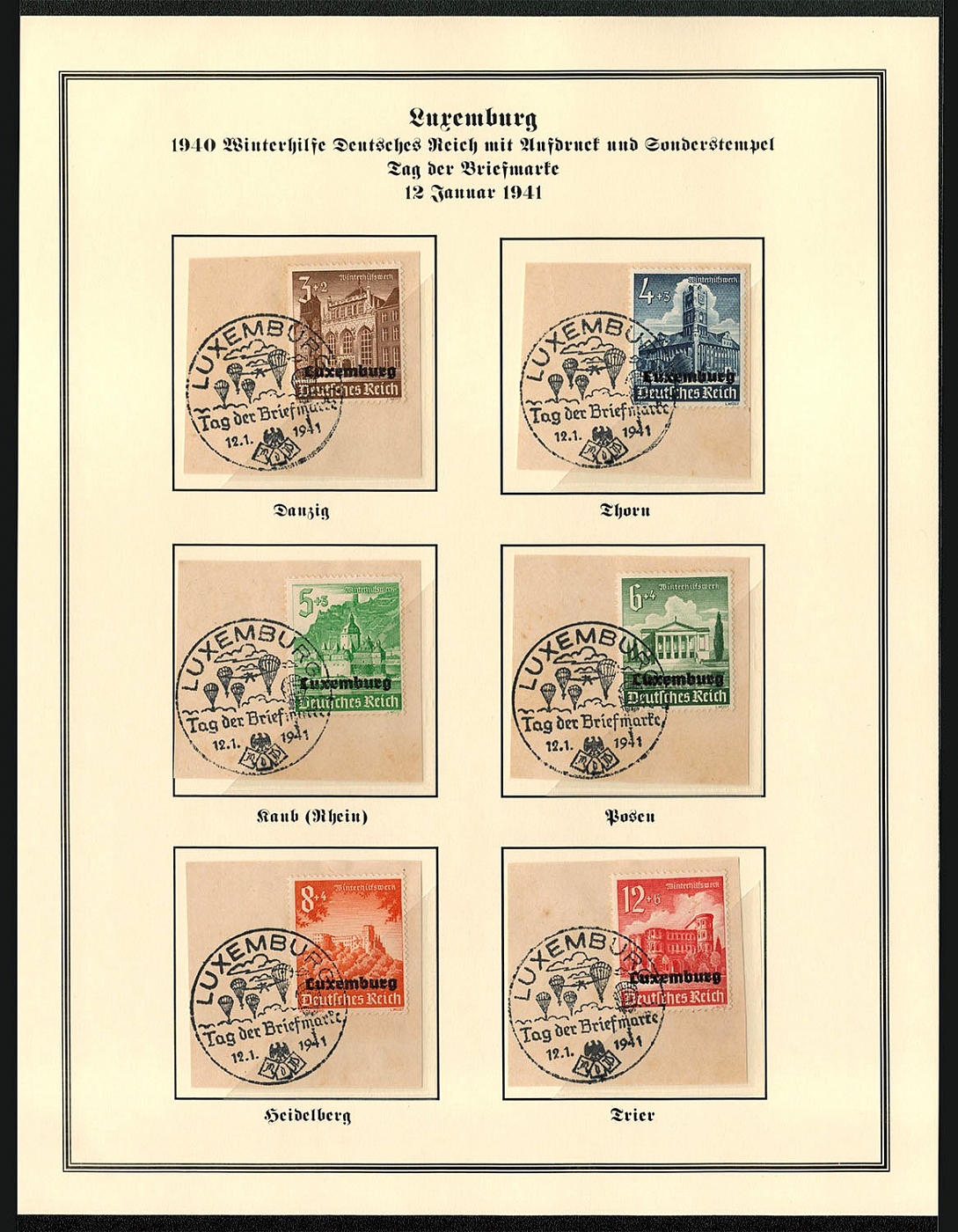
1941 Occupation of Luxembourg Special postmarks (4 photo)
1941 Occupation of Luxembourg Special postmarks (4 photo)
Sold for:
$10
1026
$20
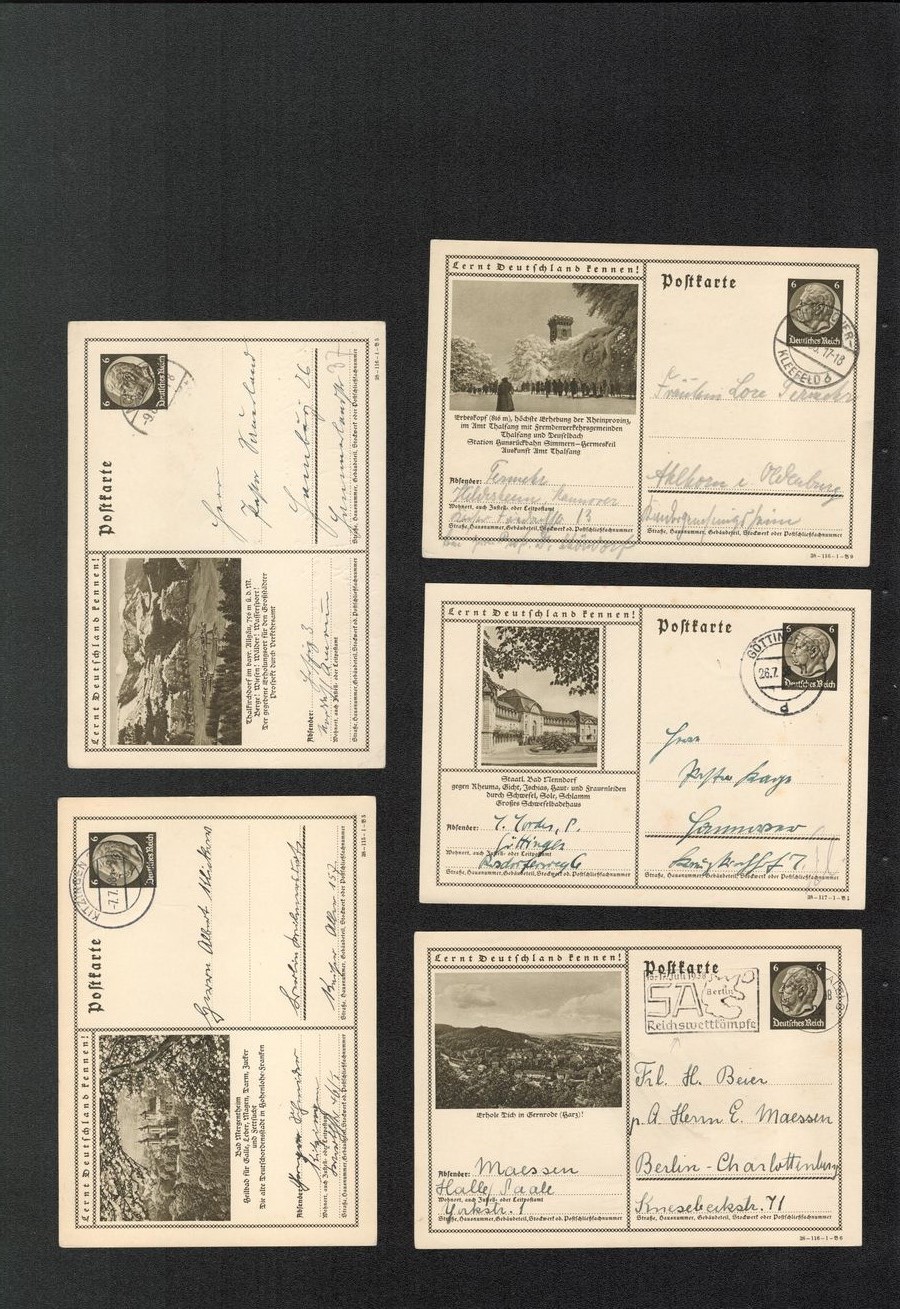
1027
$20
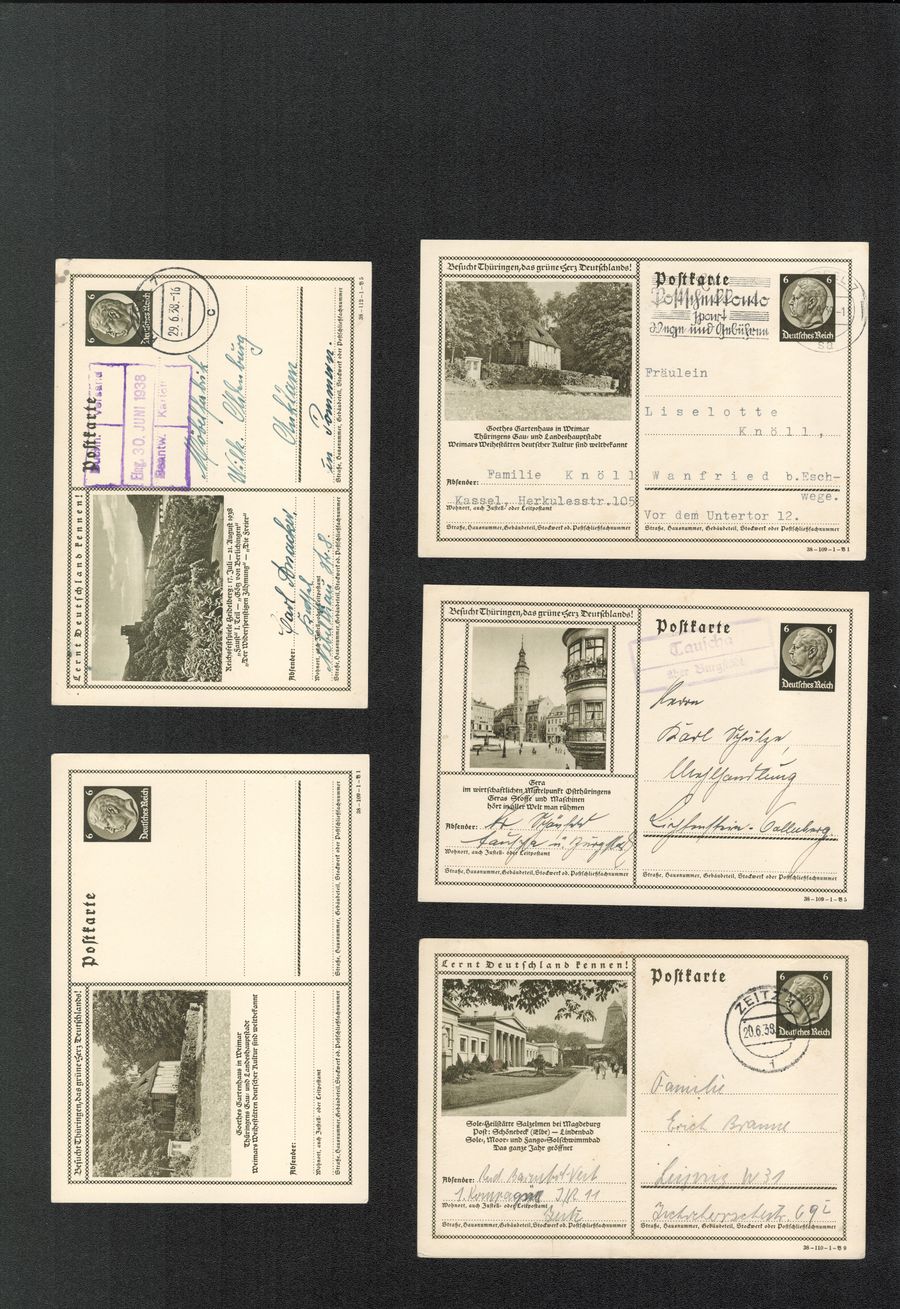
1028
$20
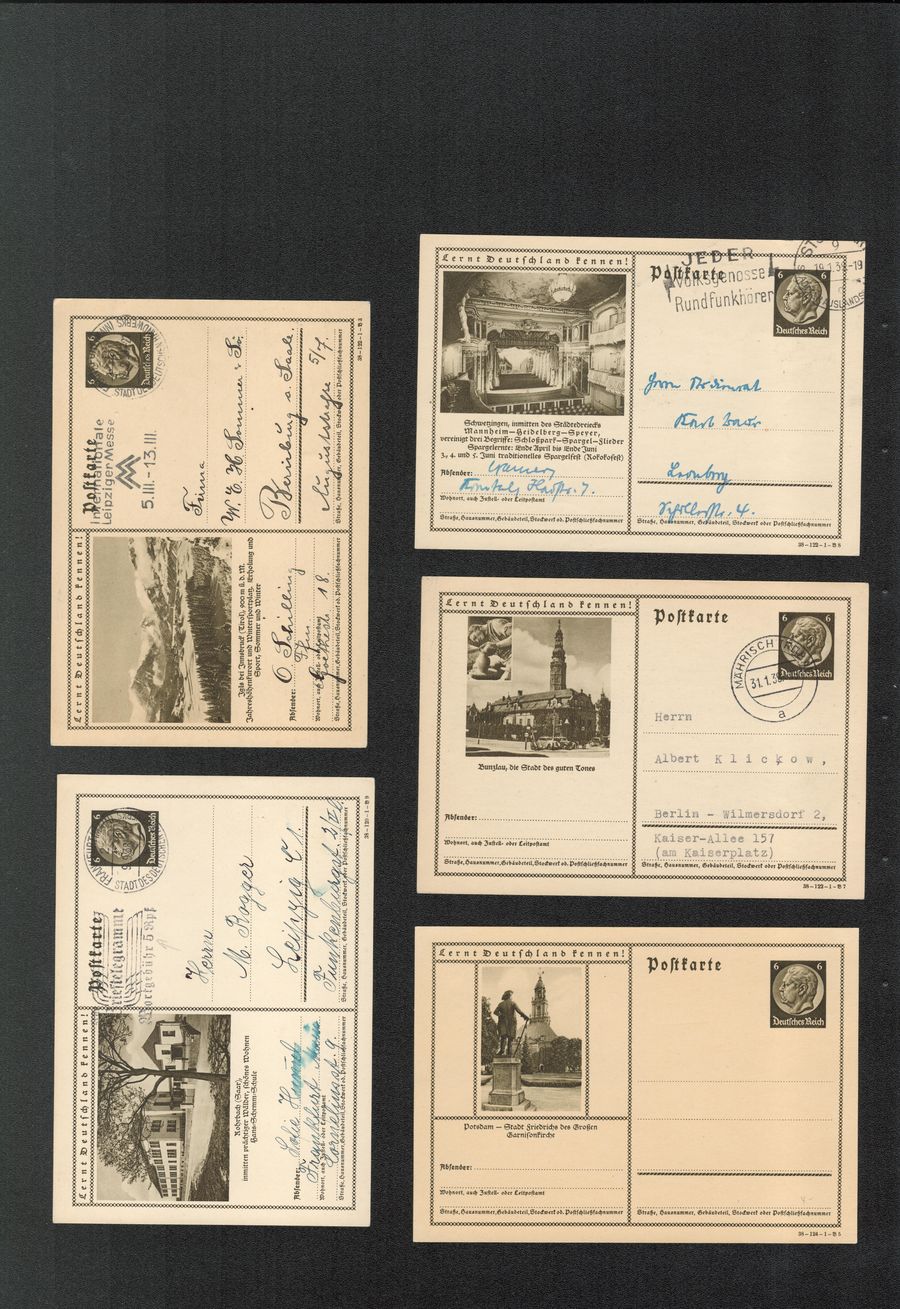
1029
$20
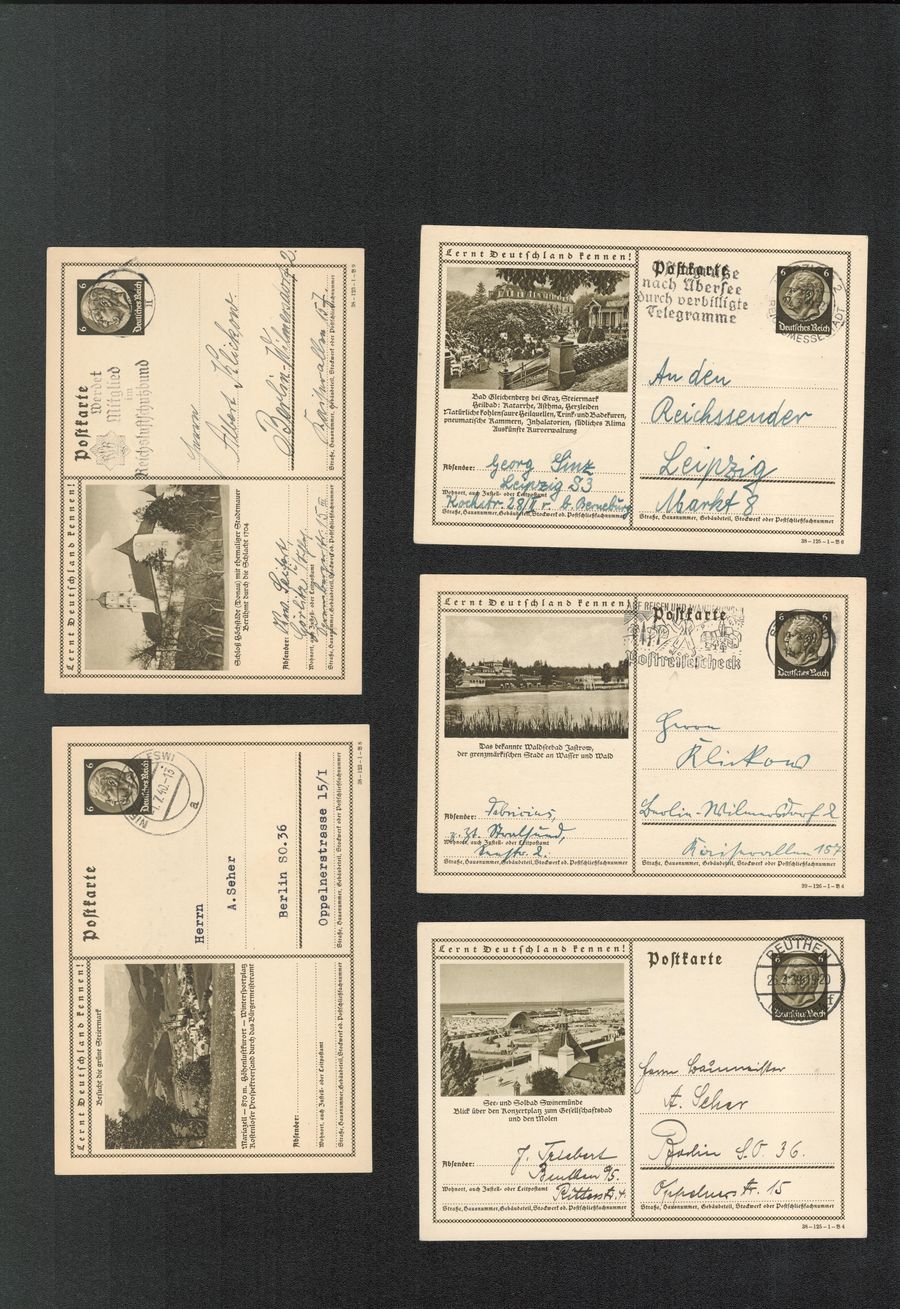
1030
$20
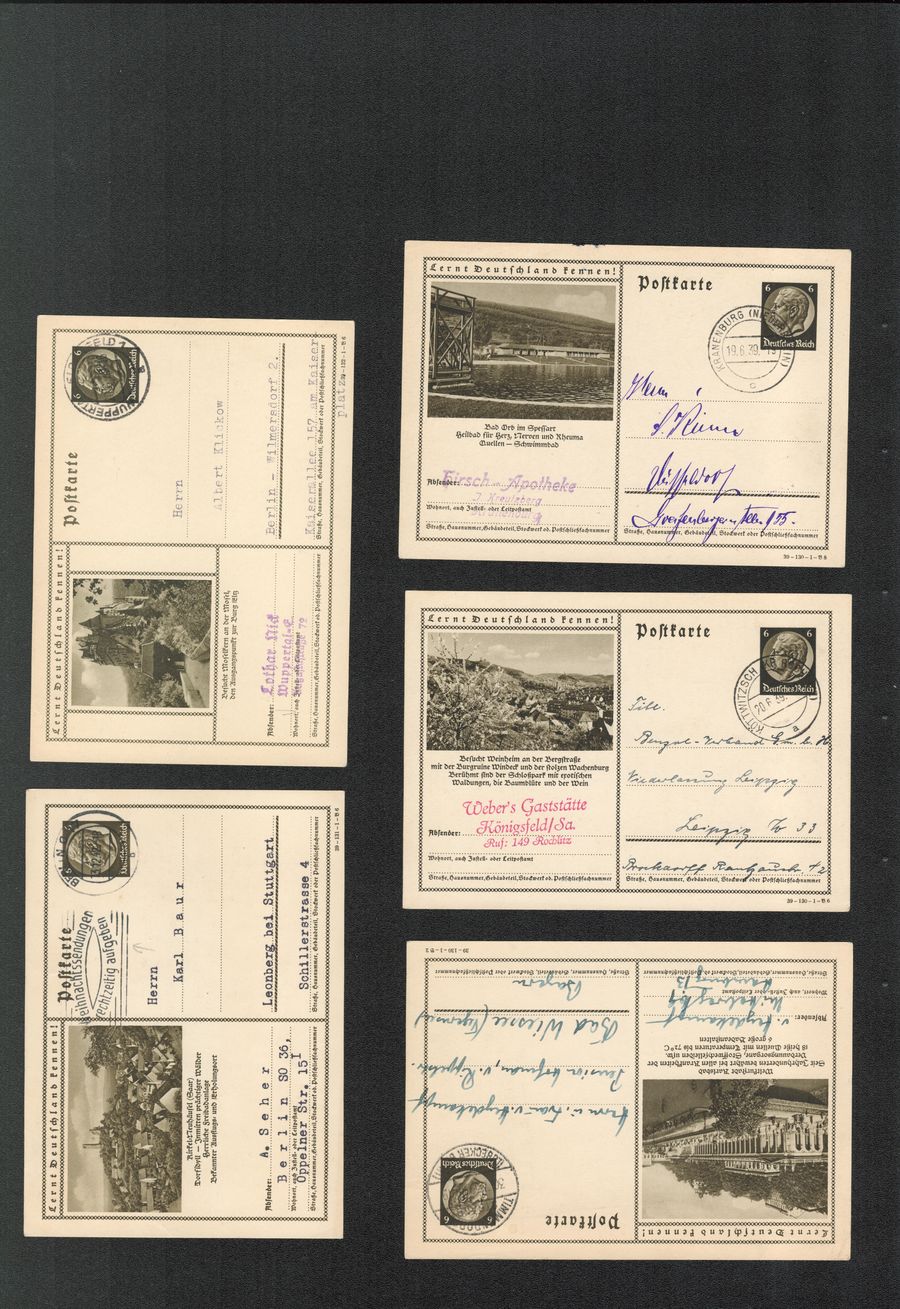
1031
$20
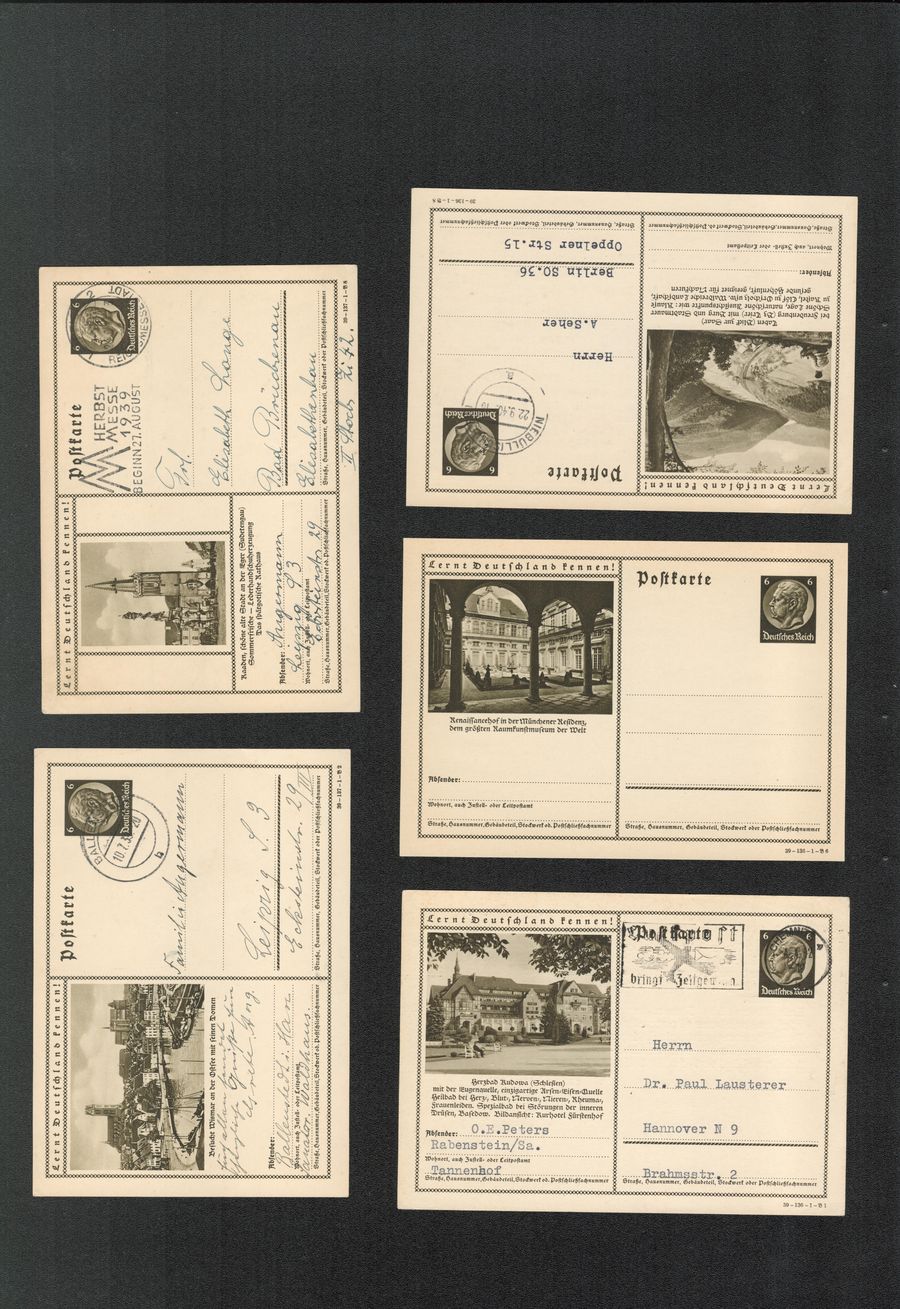
Lot Number
Price
1032
$20
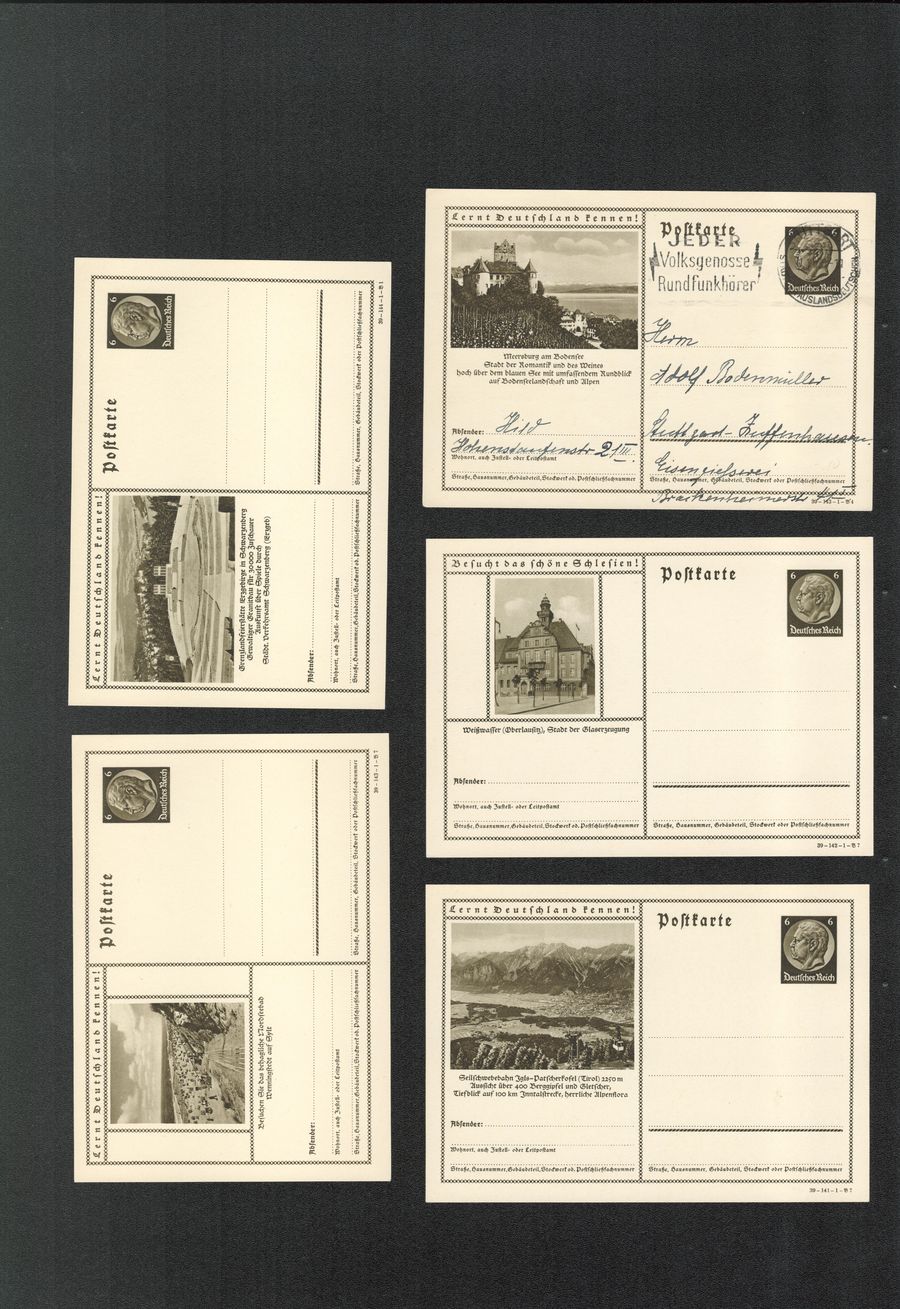
1033
$20
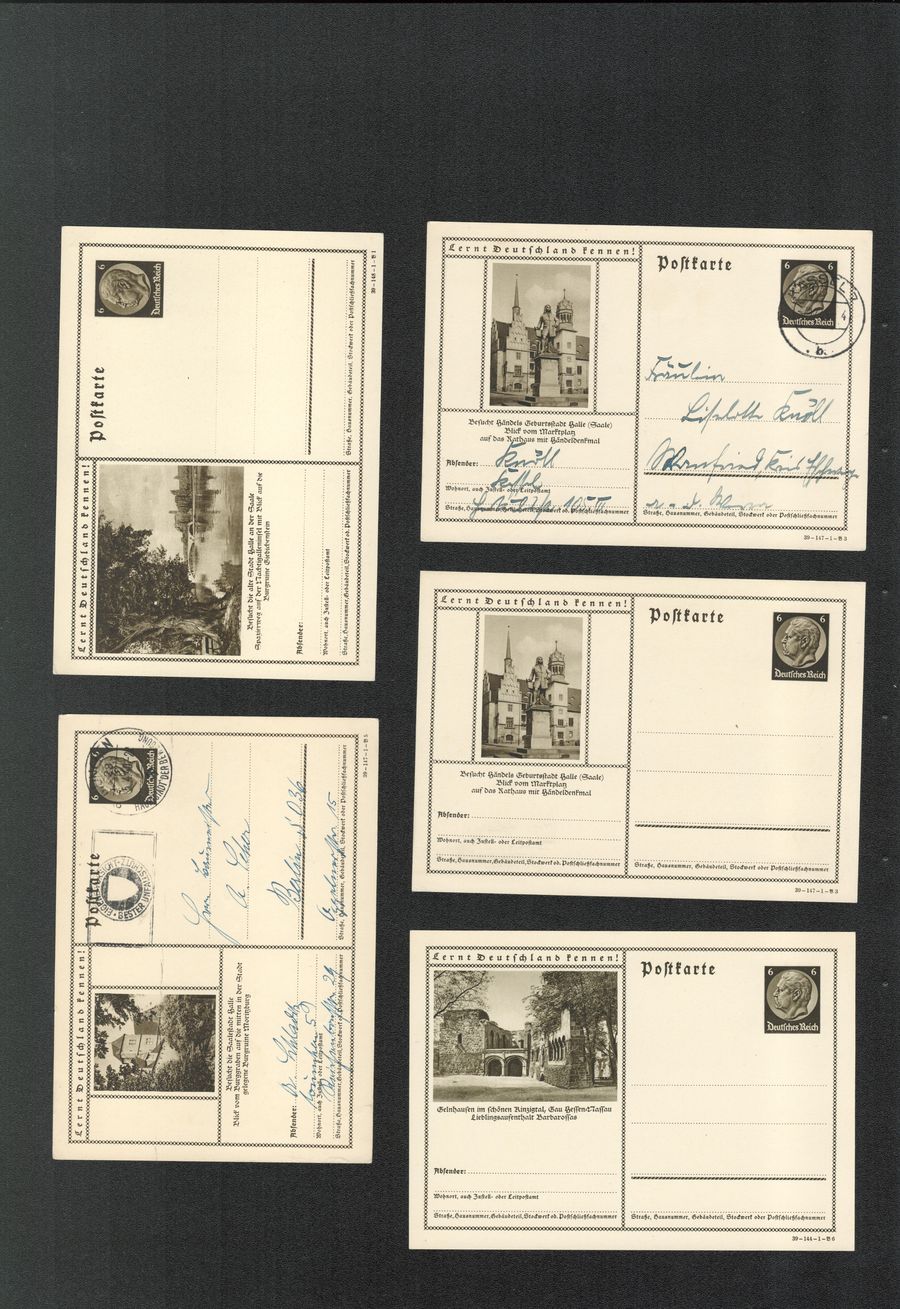
1034
$20
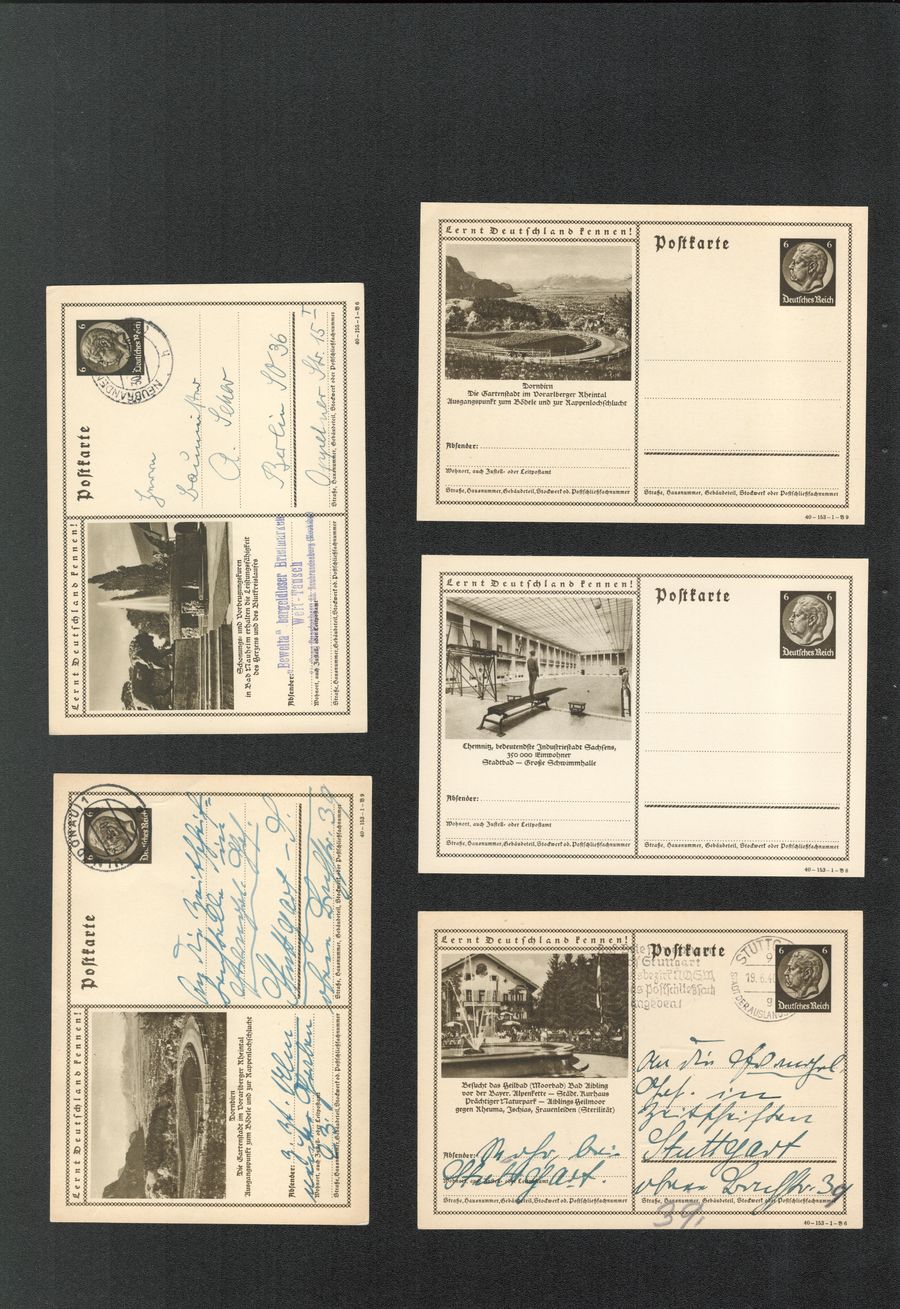
1035
$20
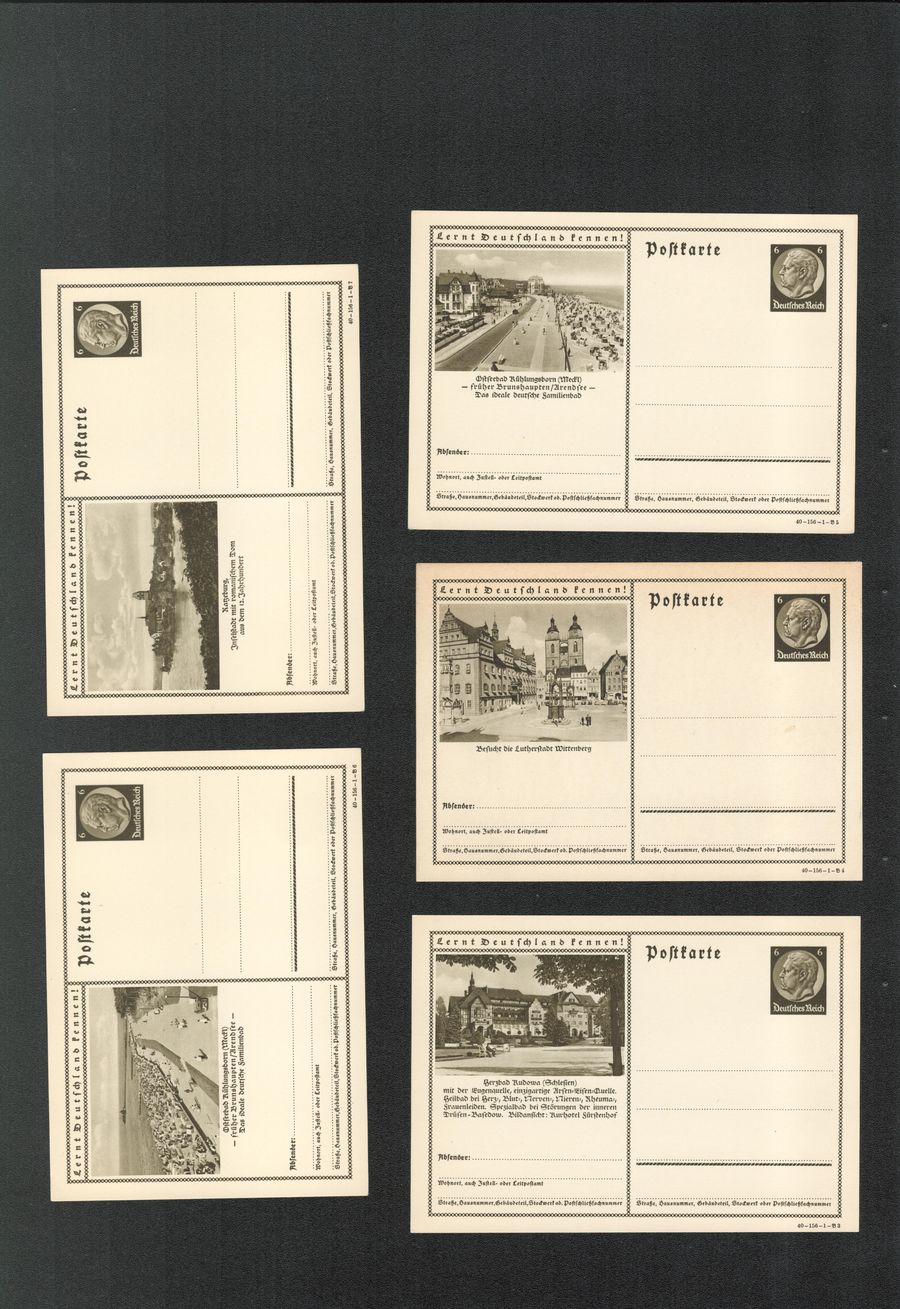
1036
$20
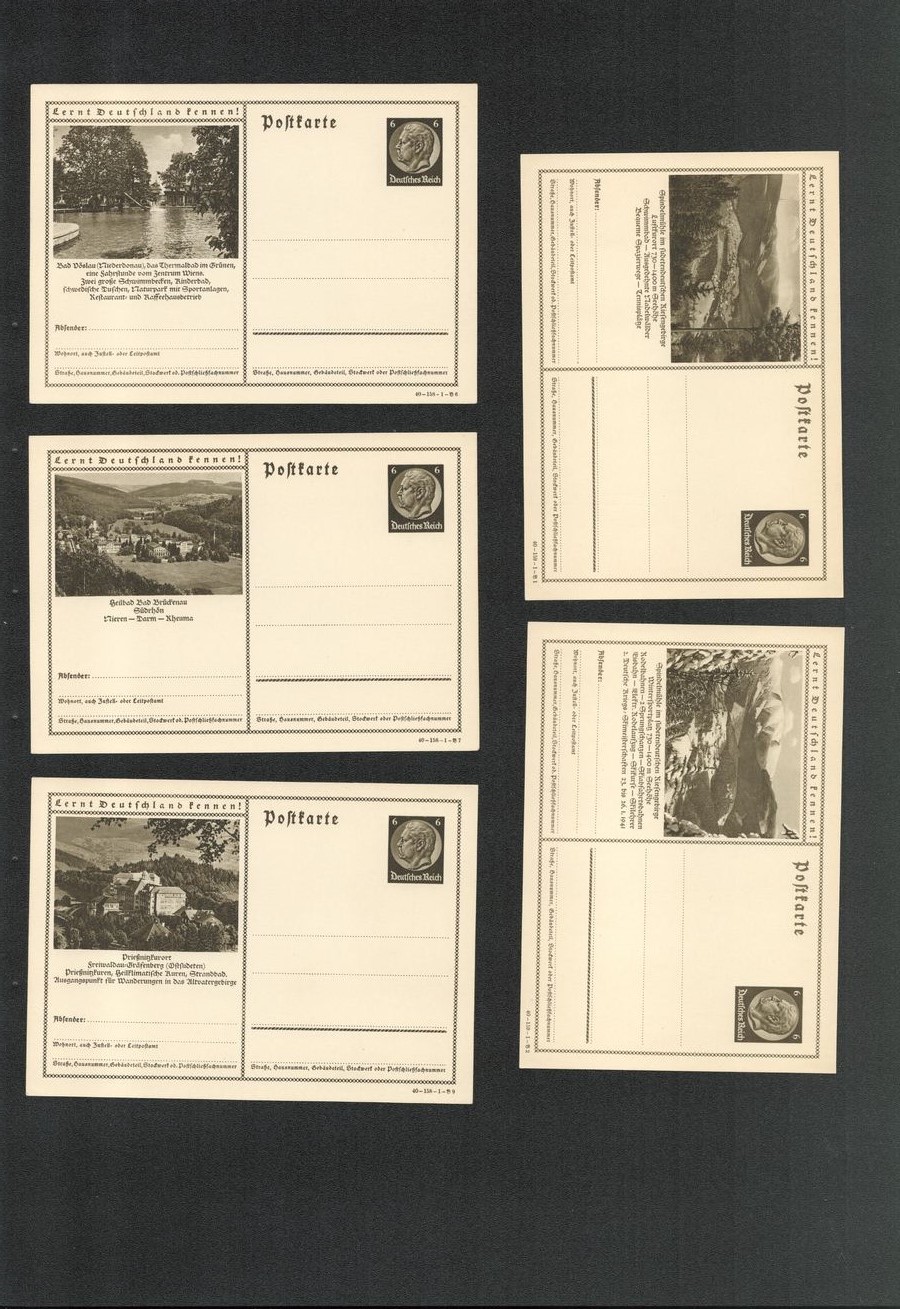
1037
$30
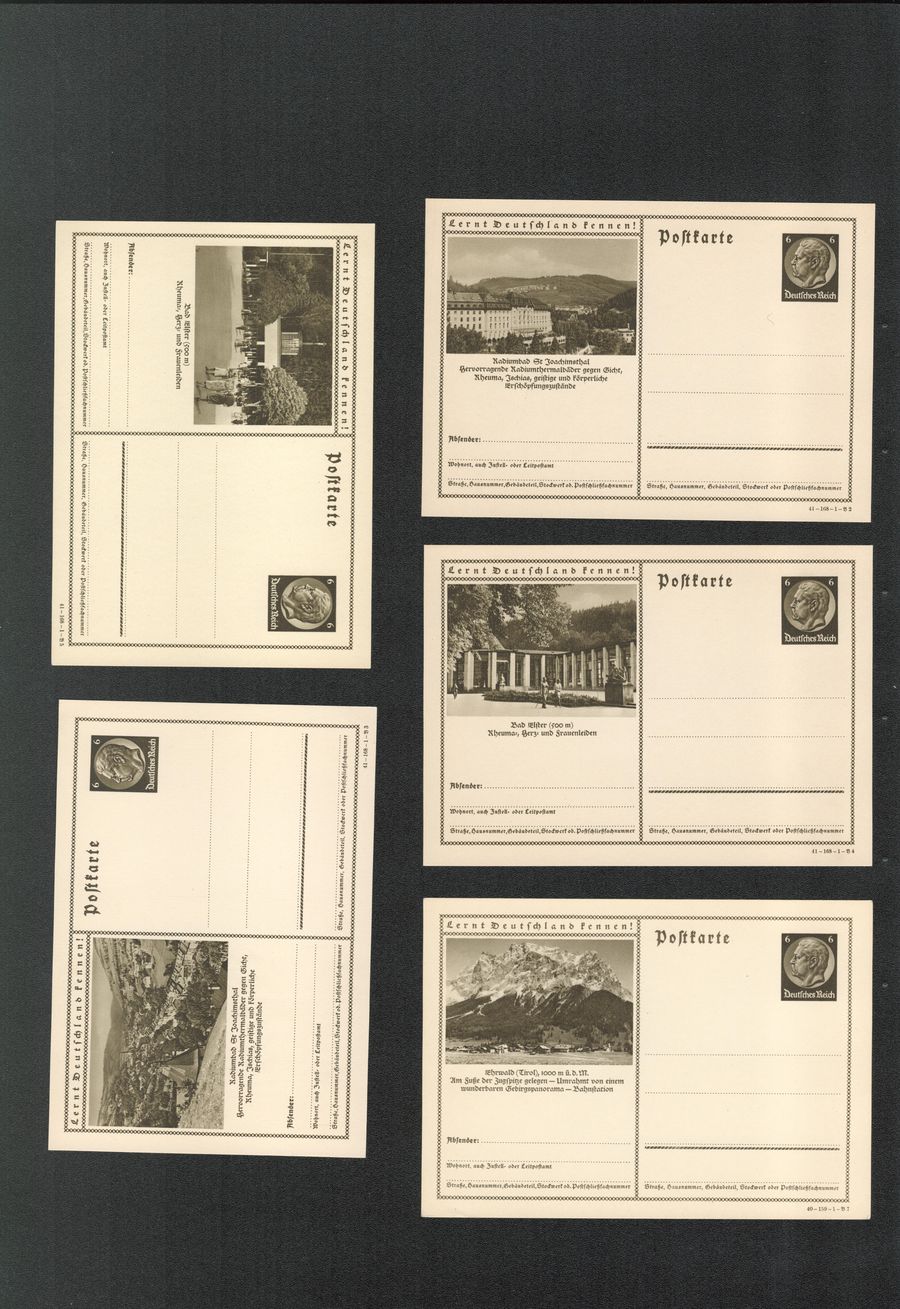
1038
$20
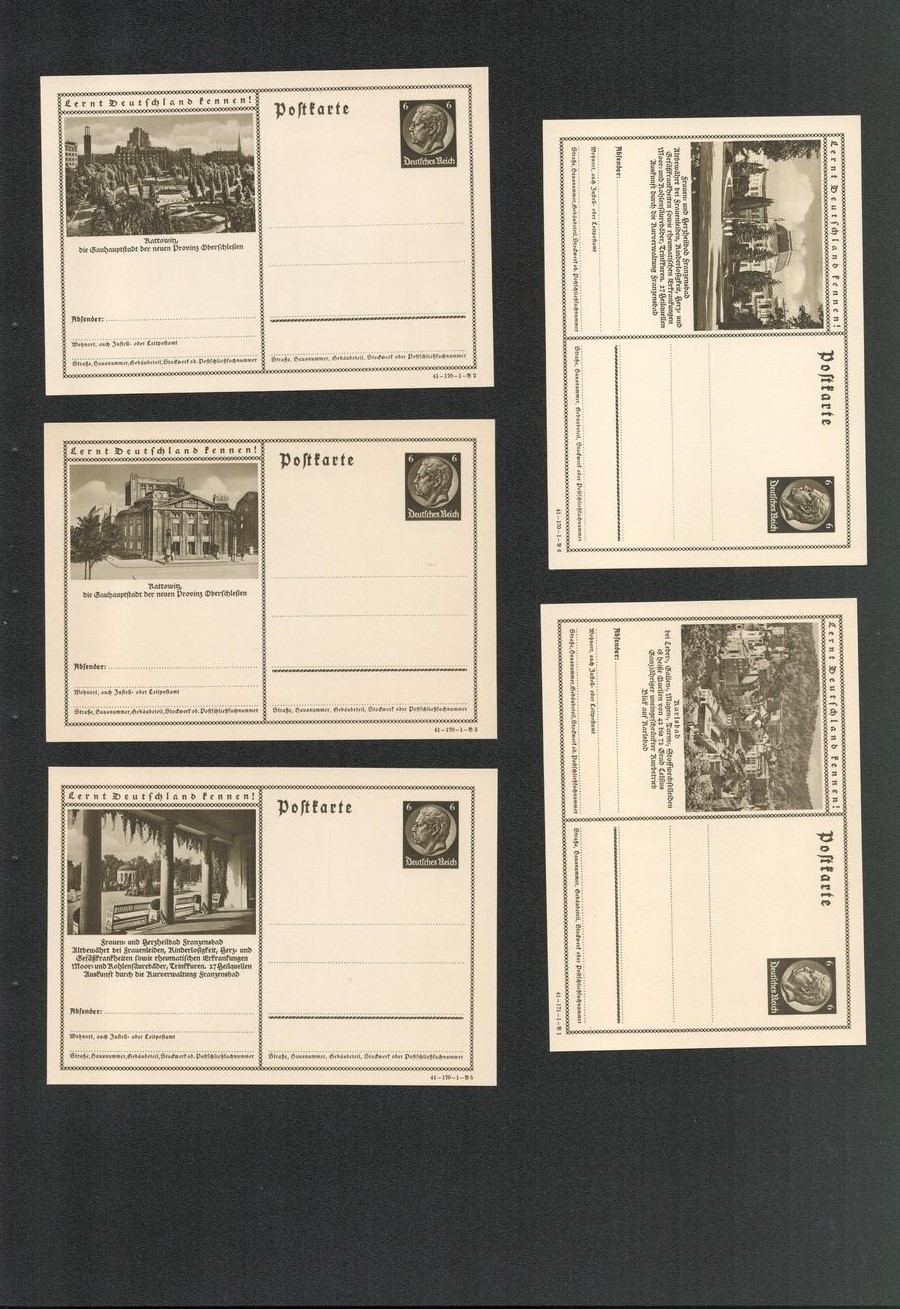
1039
$20
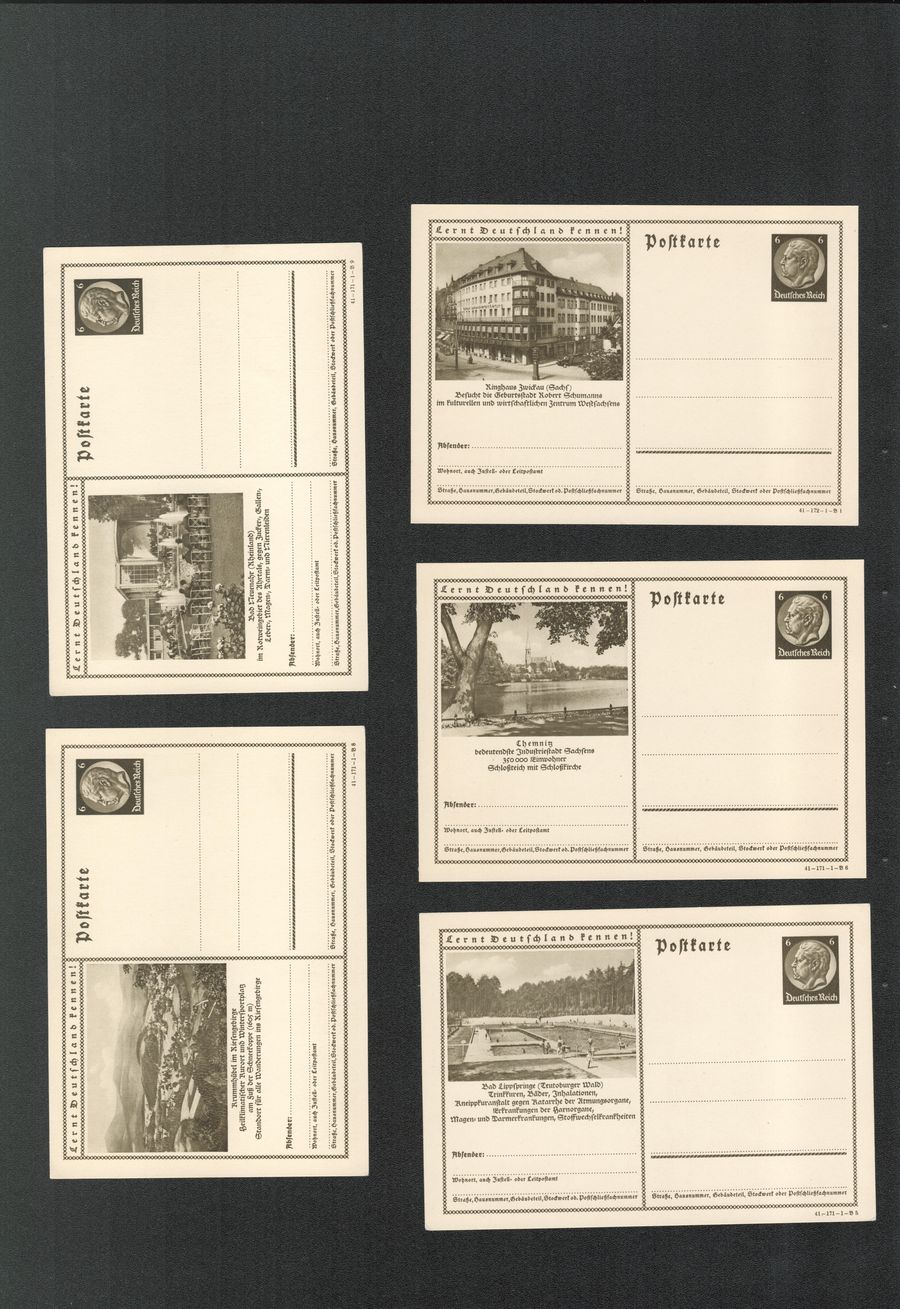
1040
$20
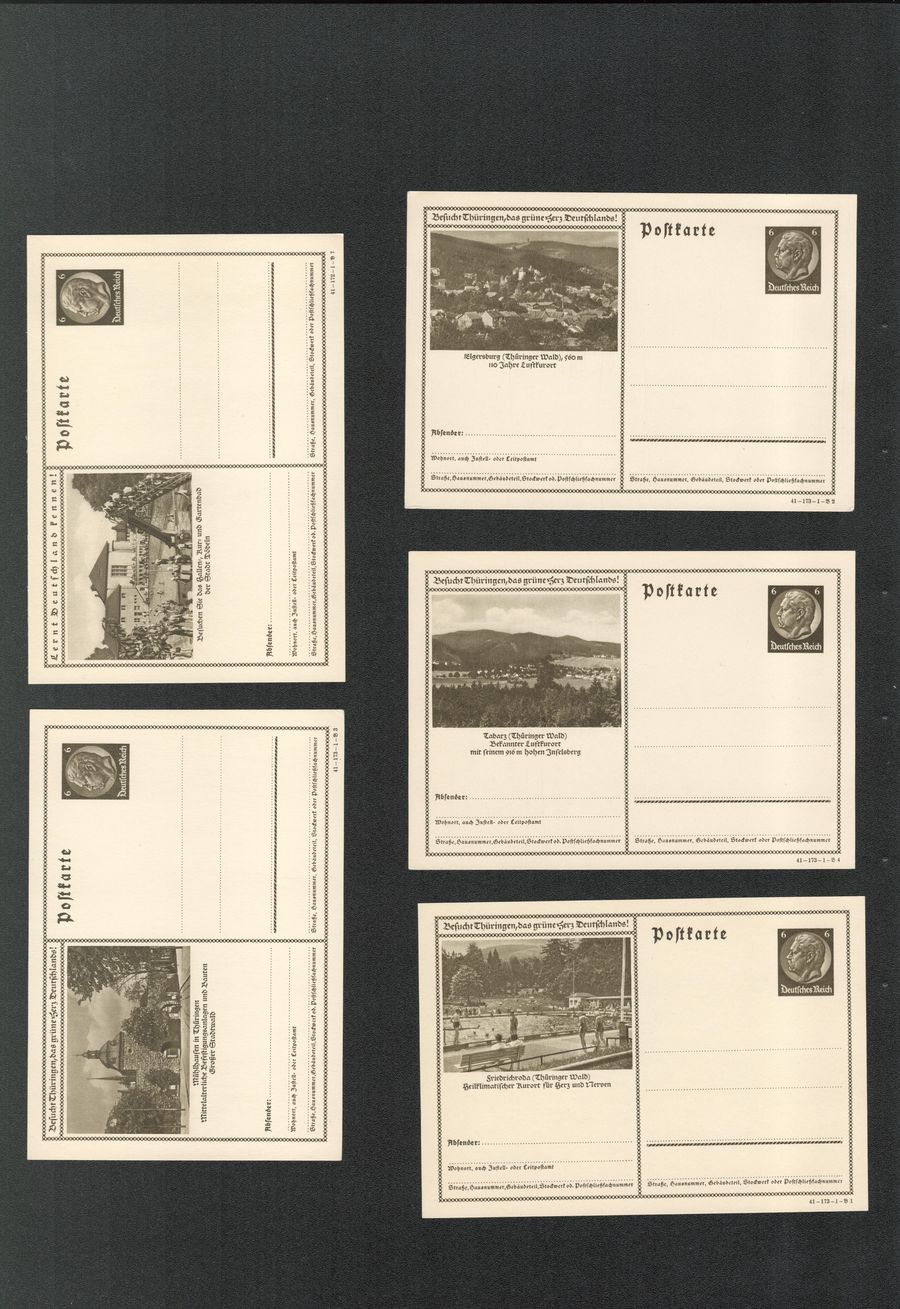
1041
$20
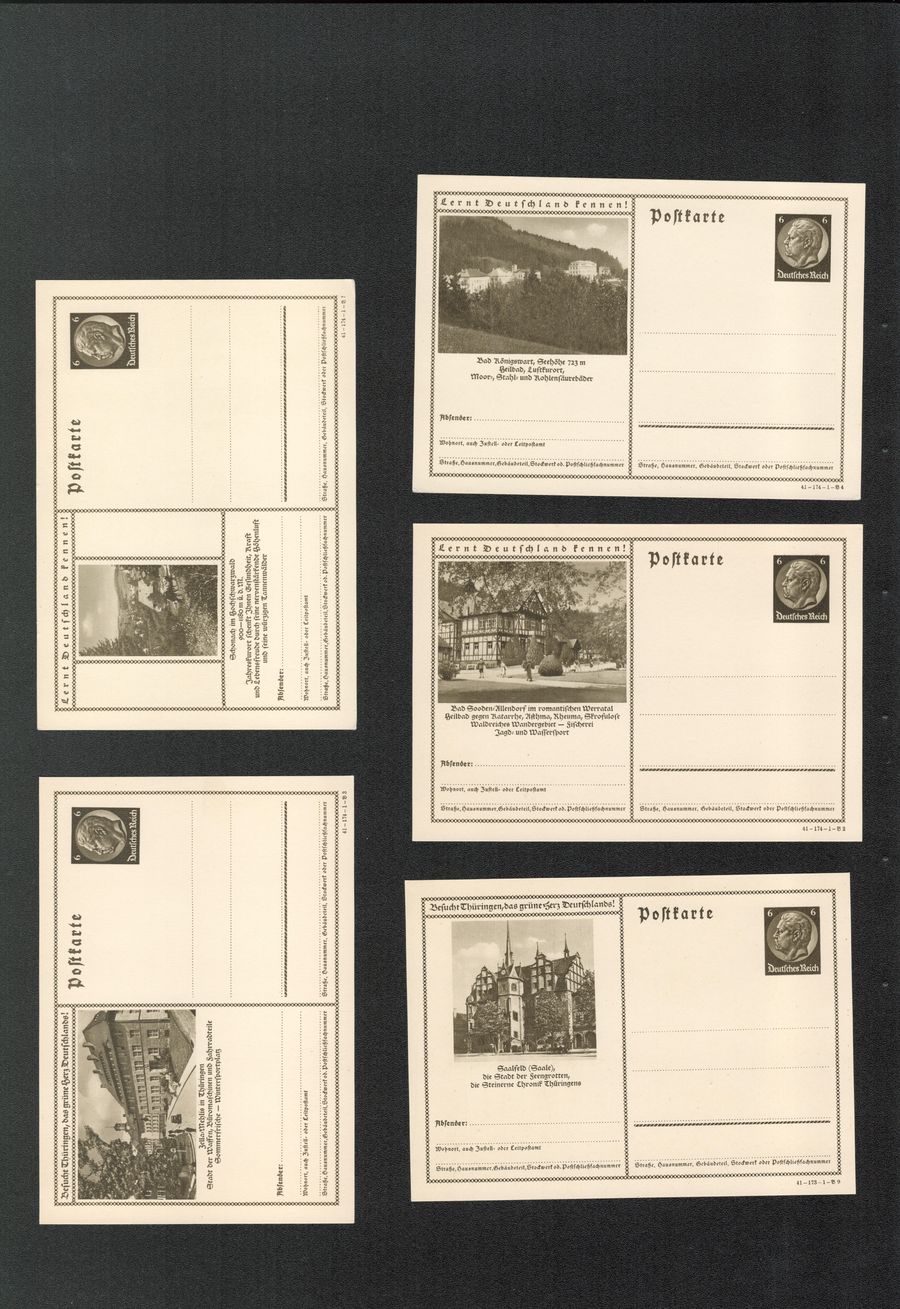
1042
$20
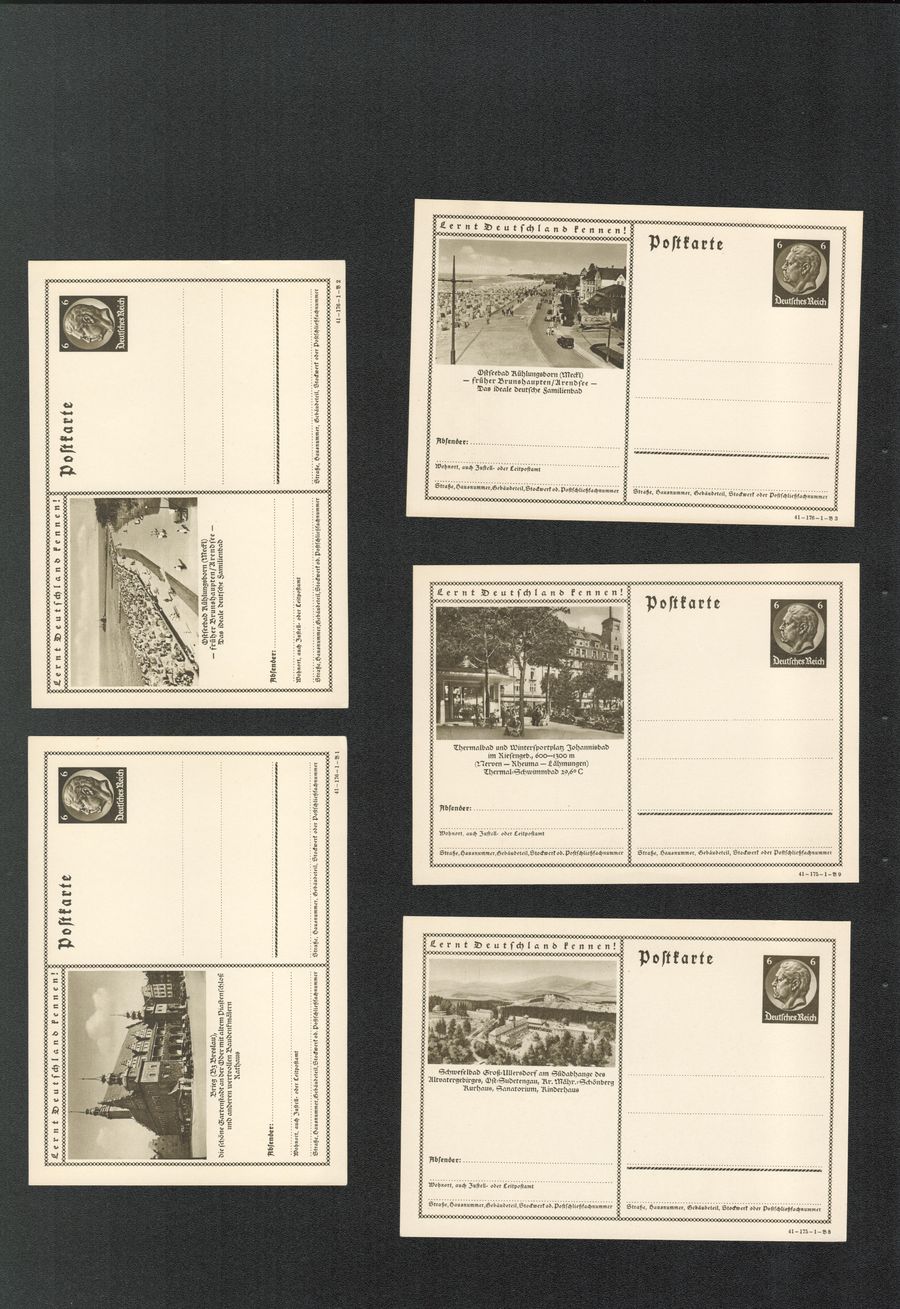
1043
$20
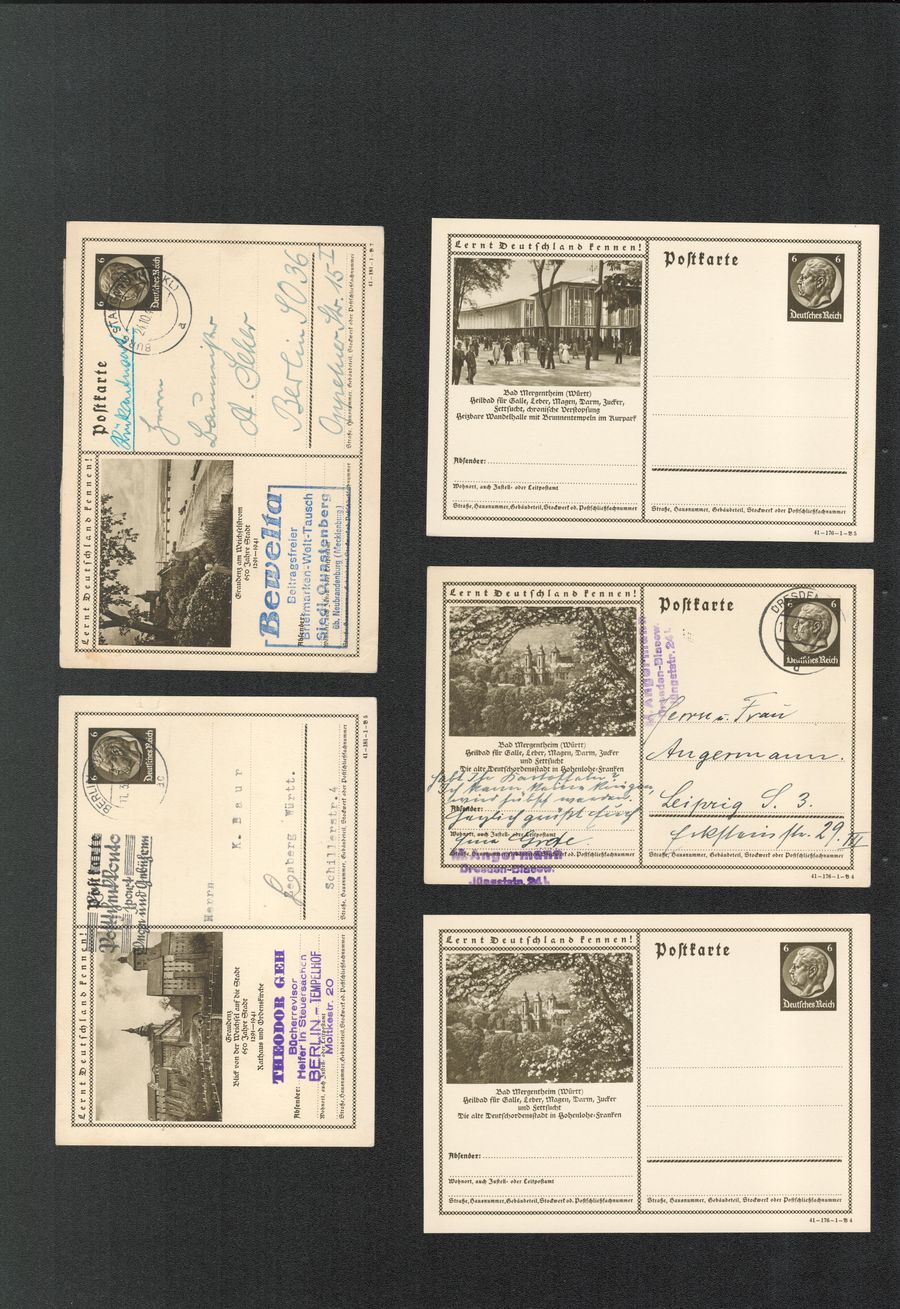
1044
$35
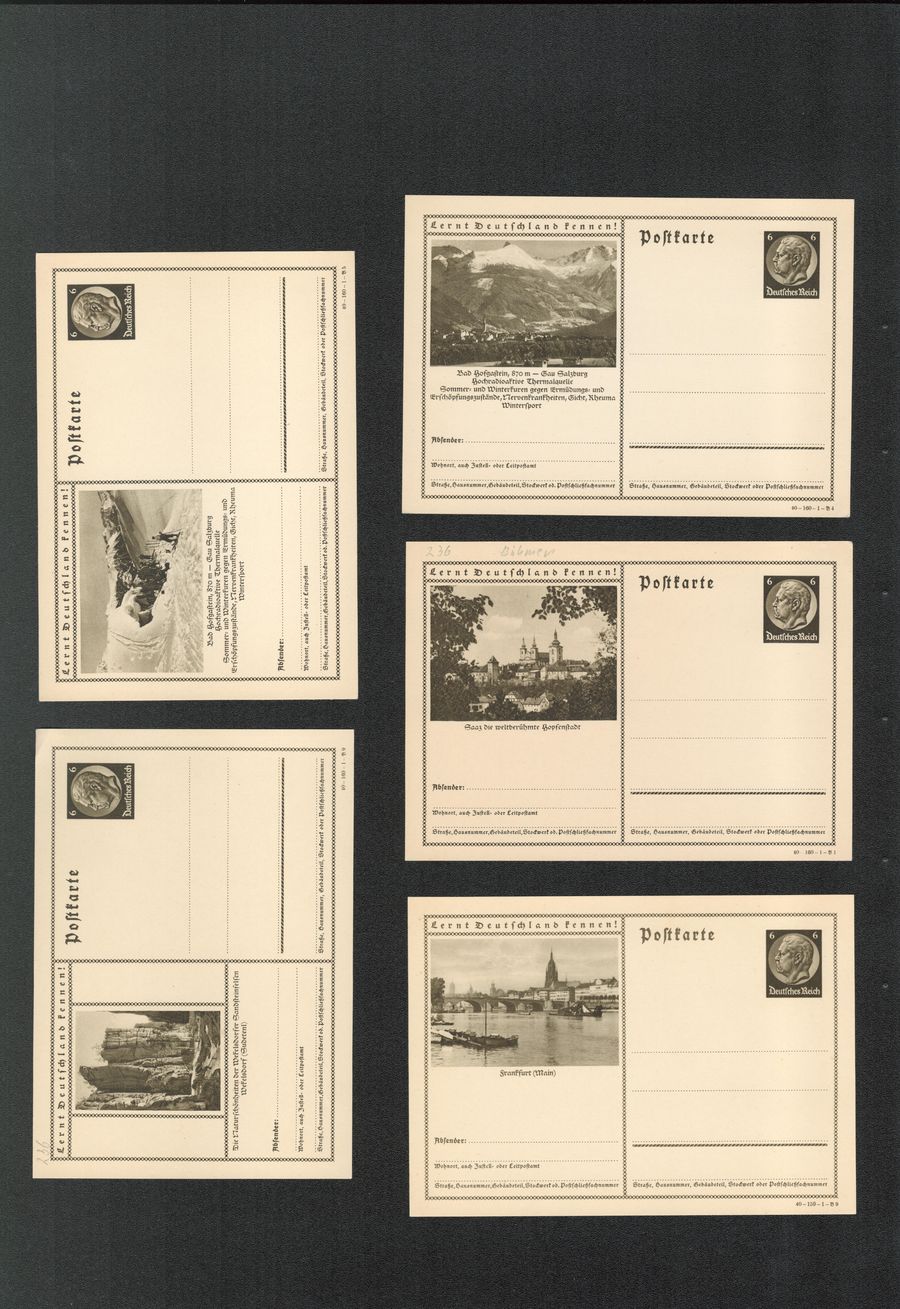
1045
$35
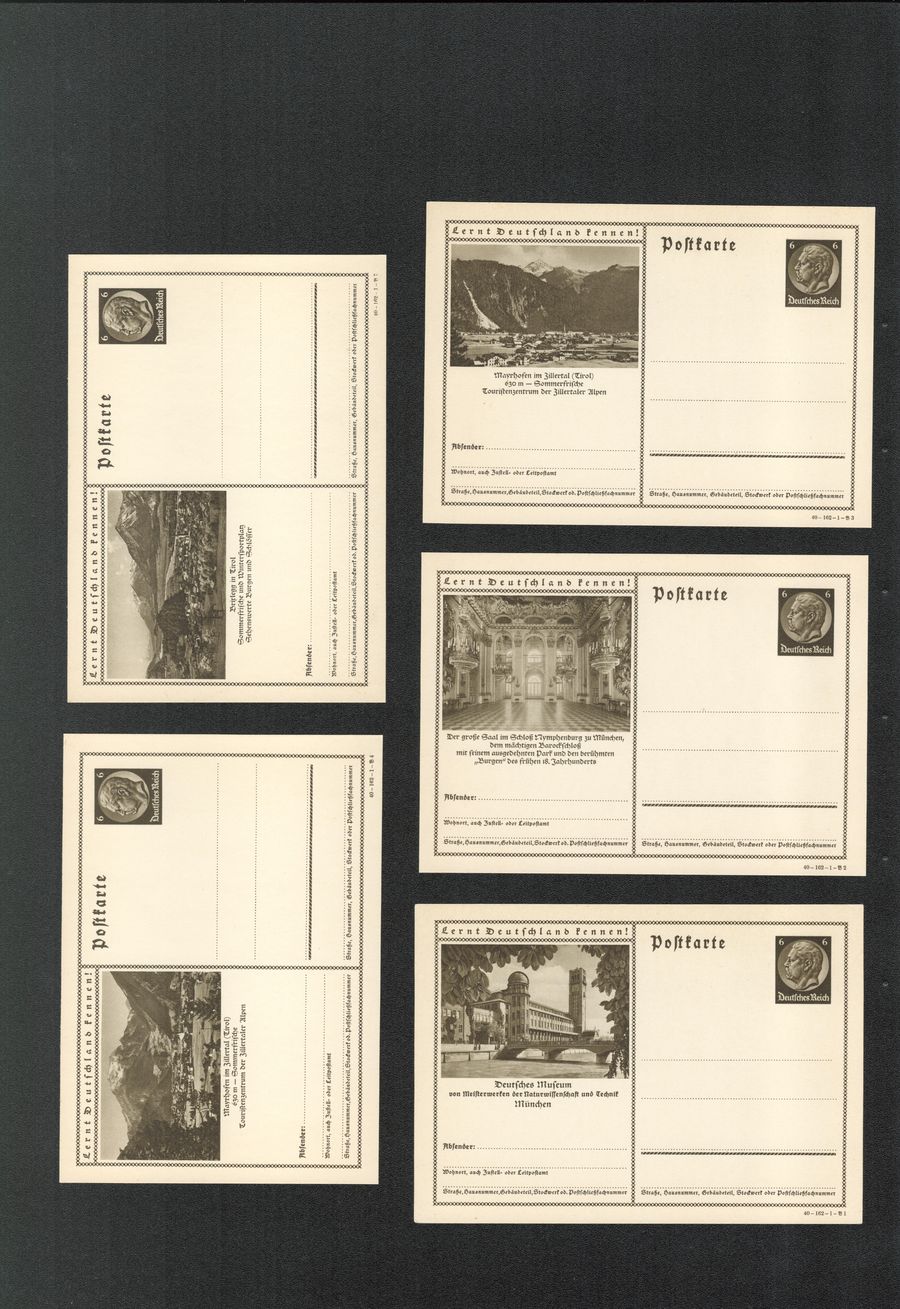
1046
$20
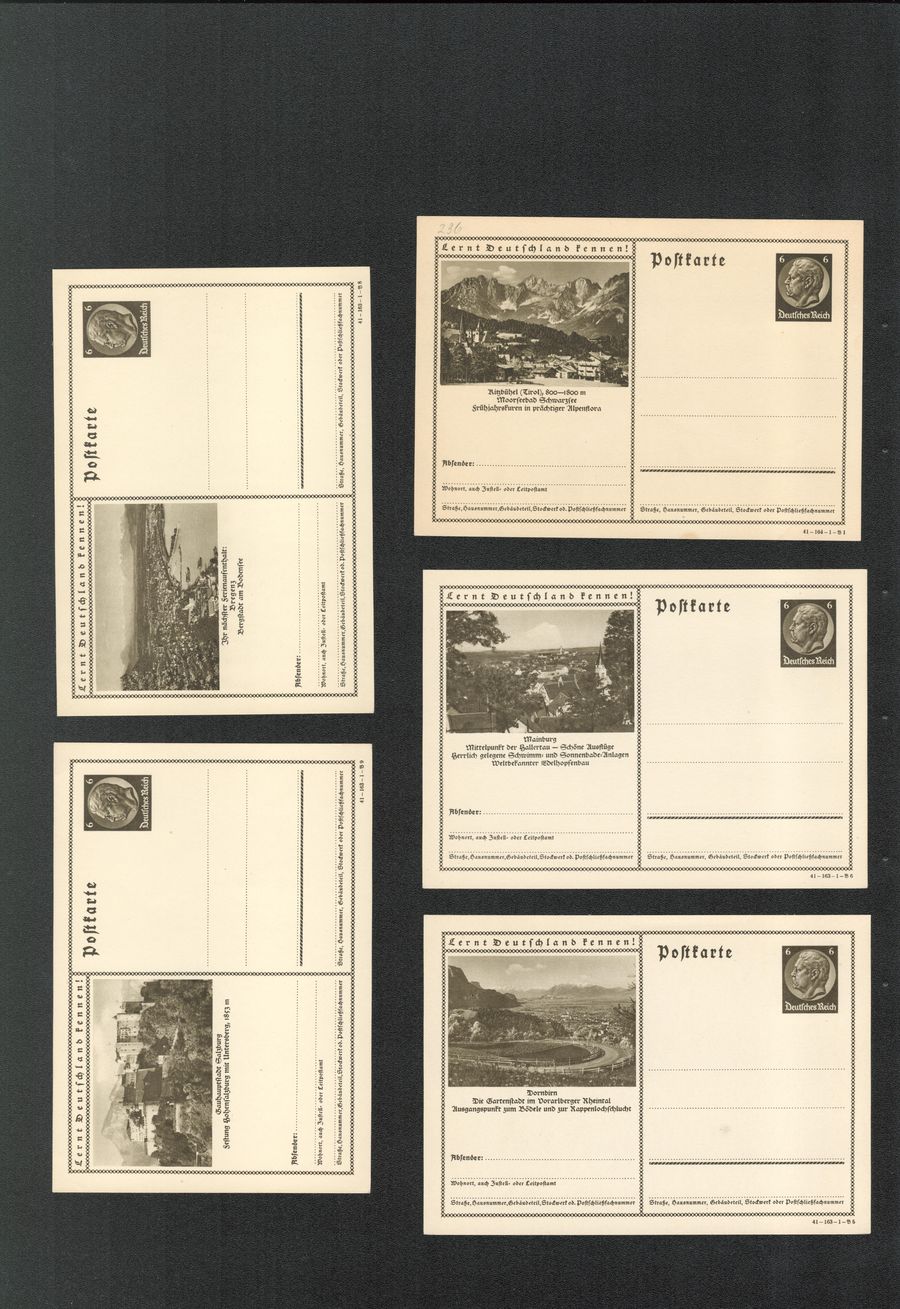
1047
$20
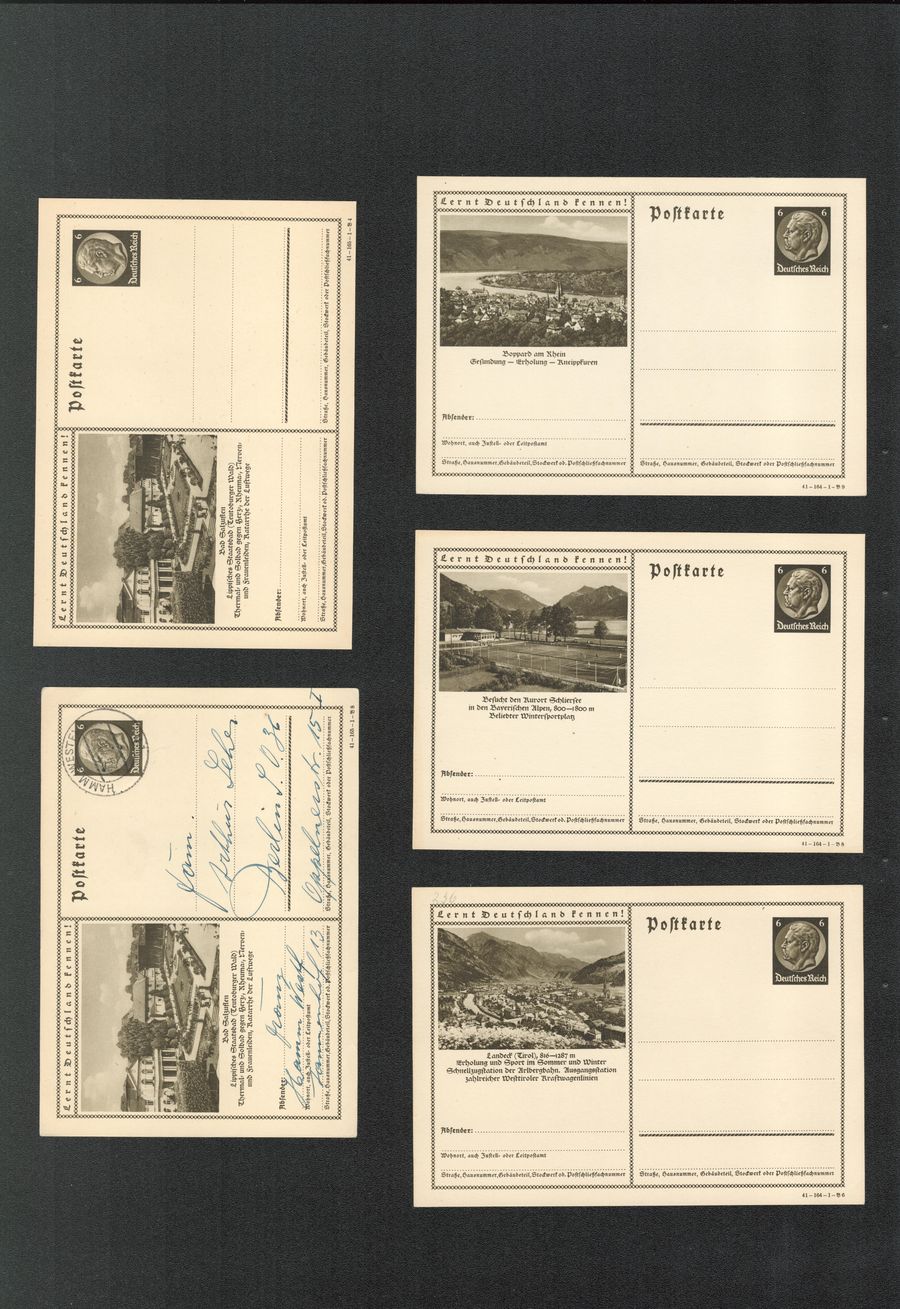
1048
$20
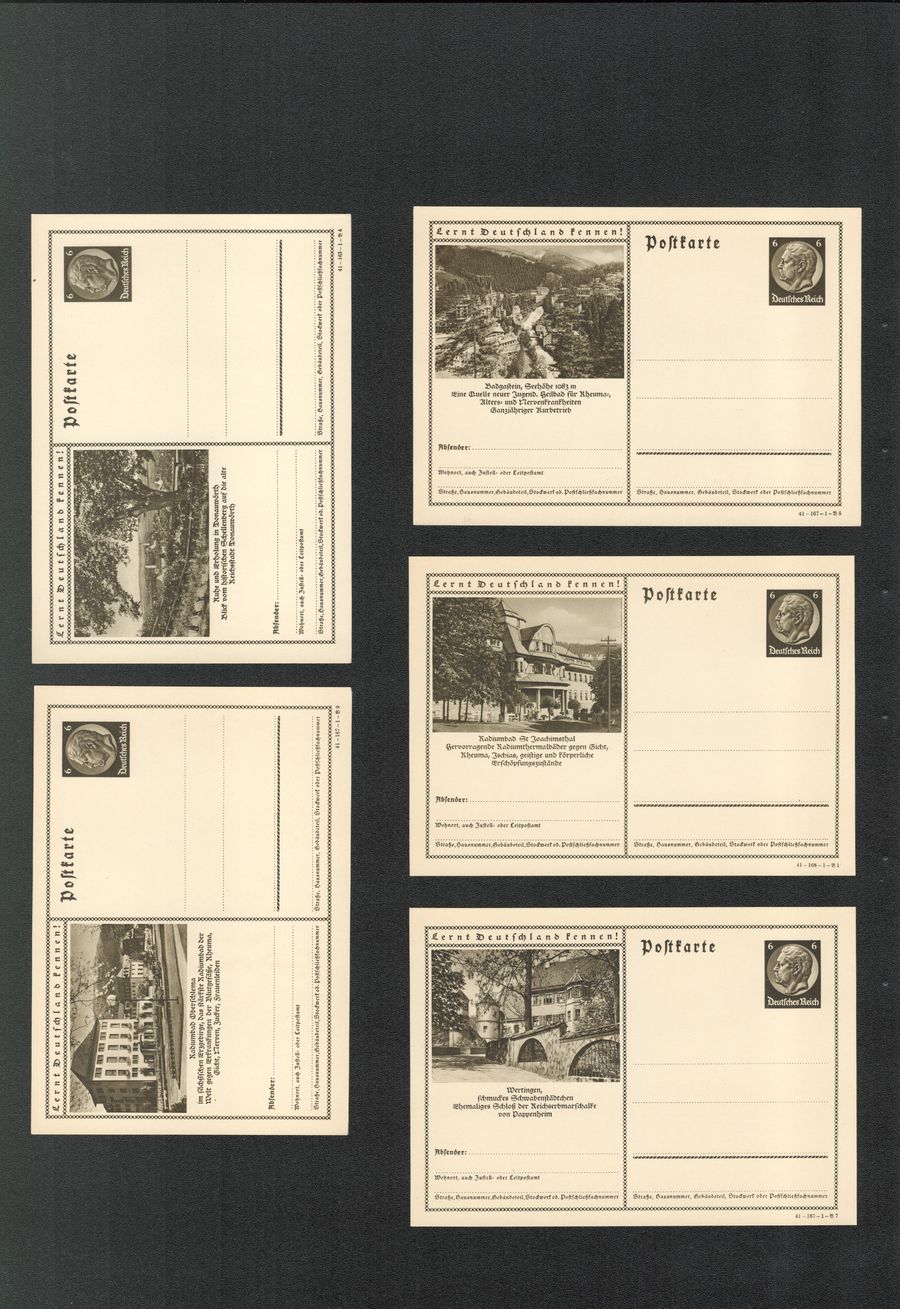
1049
$20
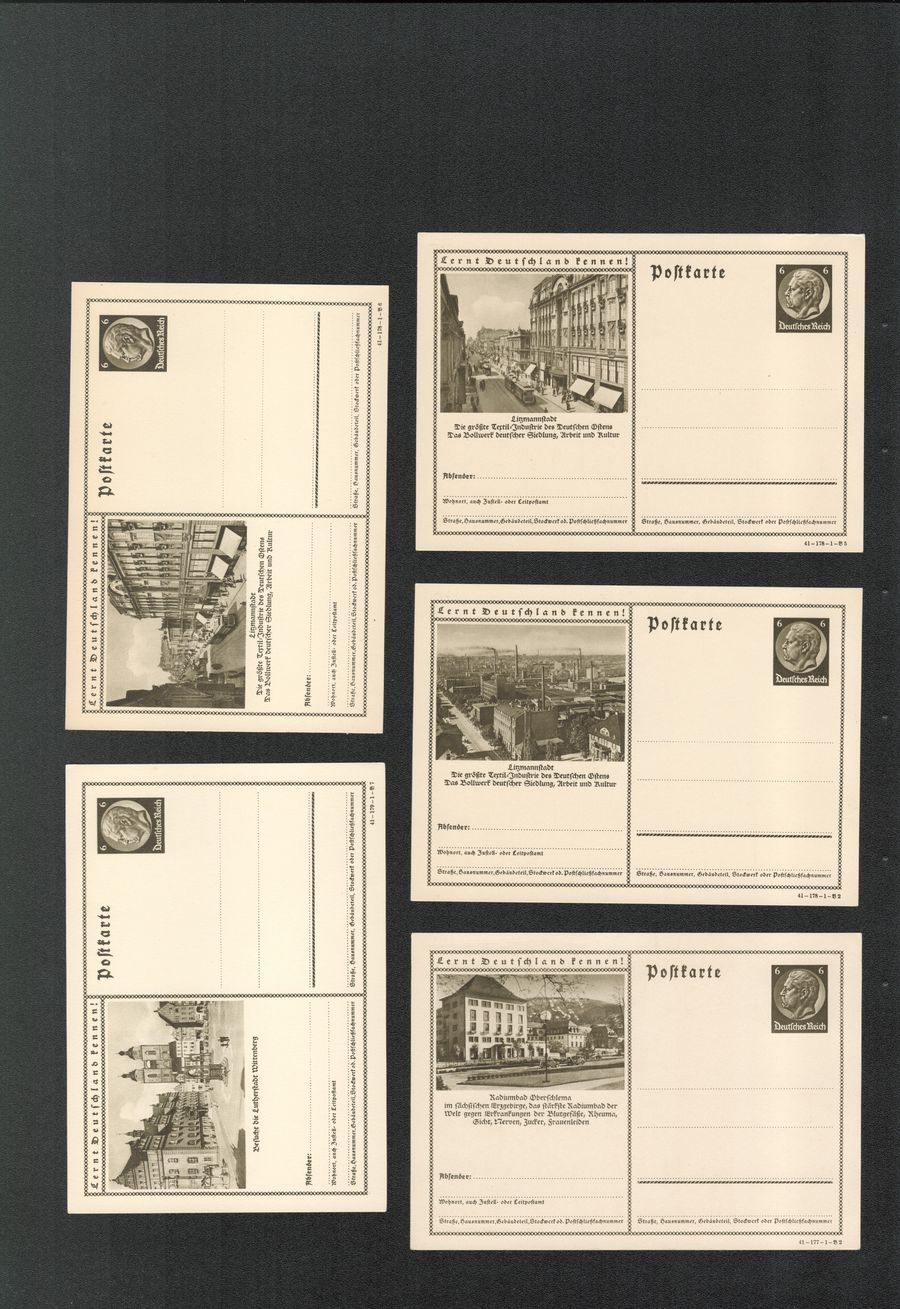
1050
$20
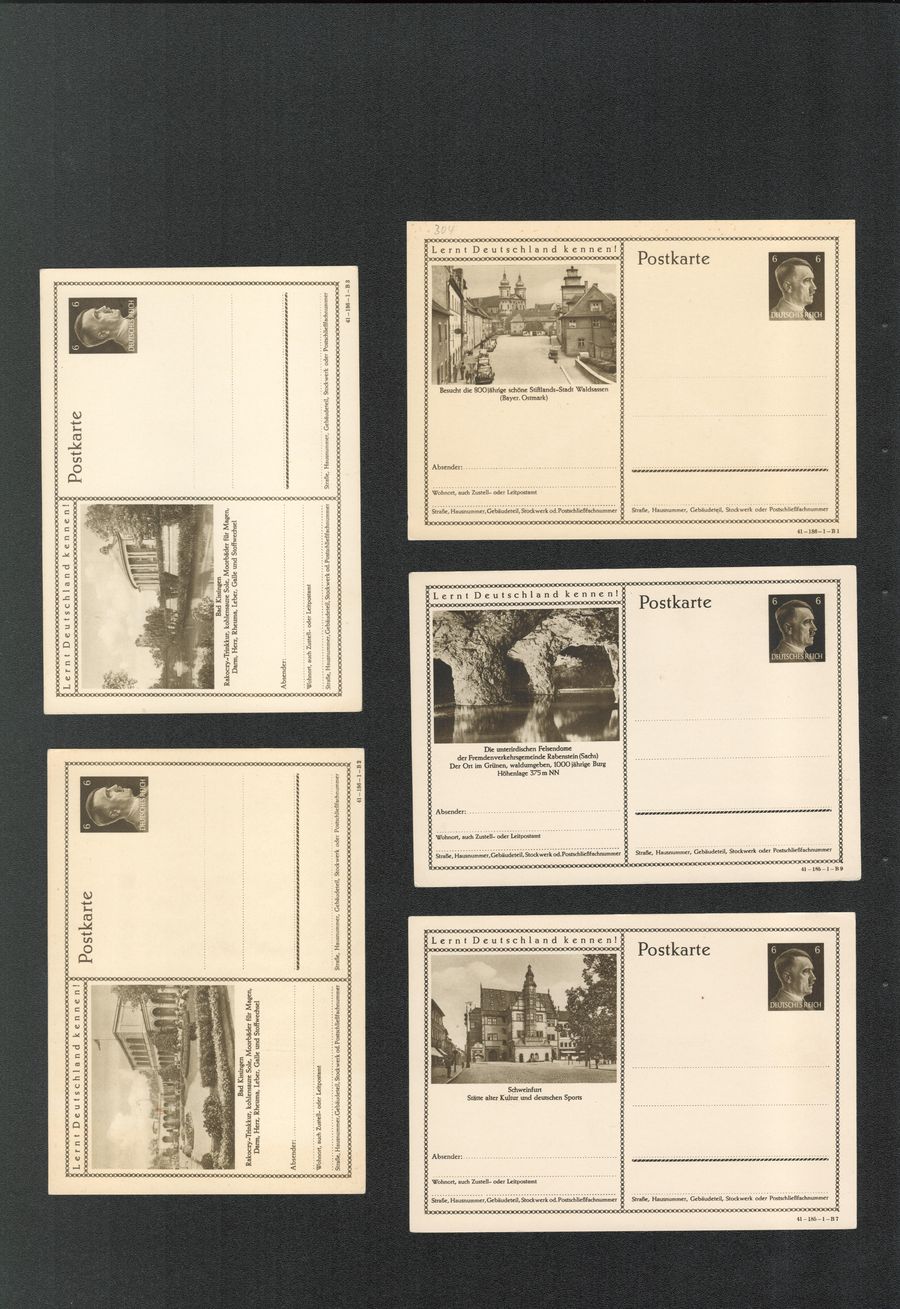
1051
$20
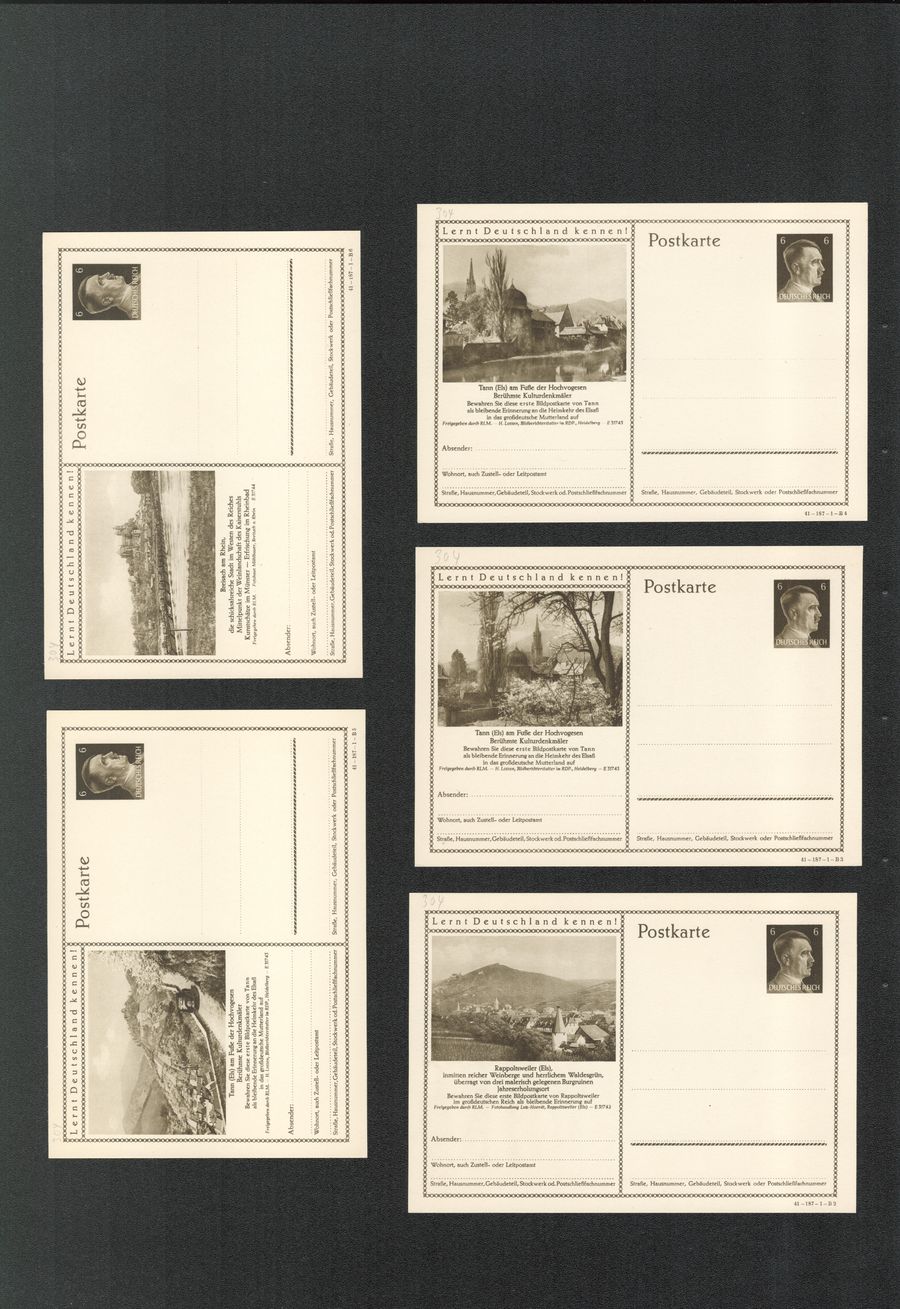
1052
$35
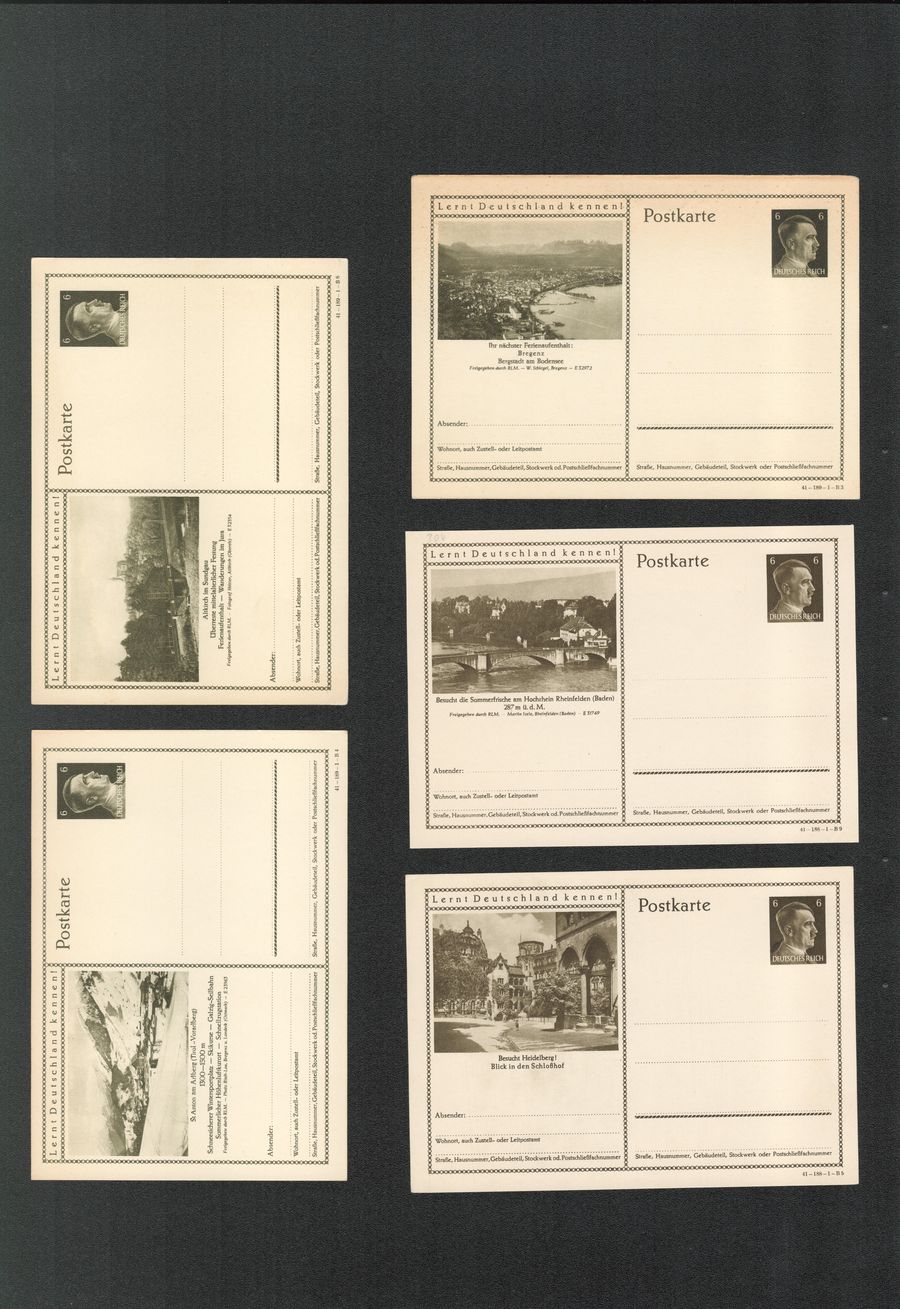
1053
$20
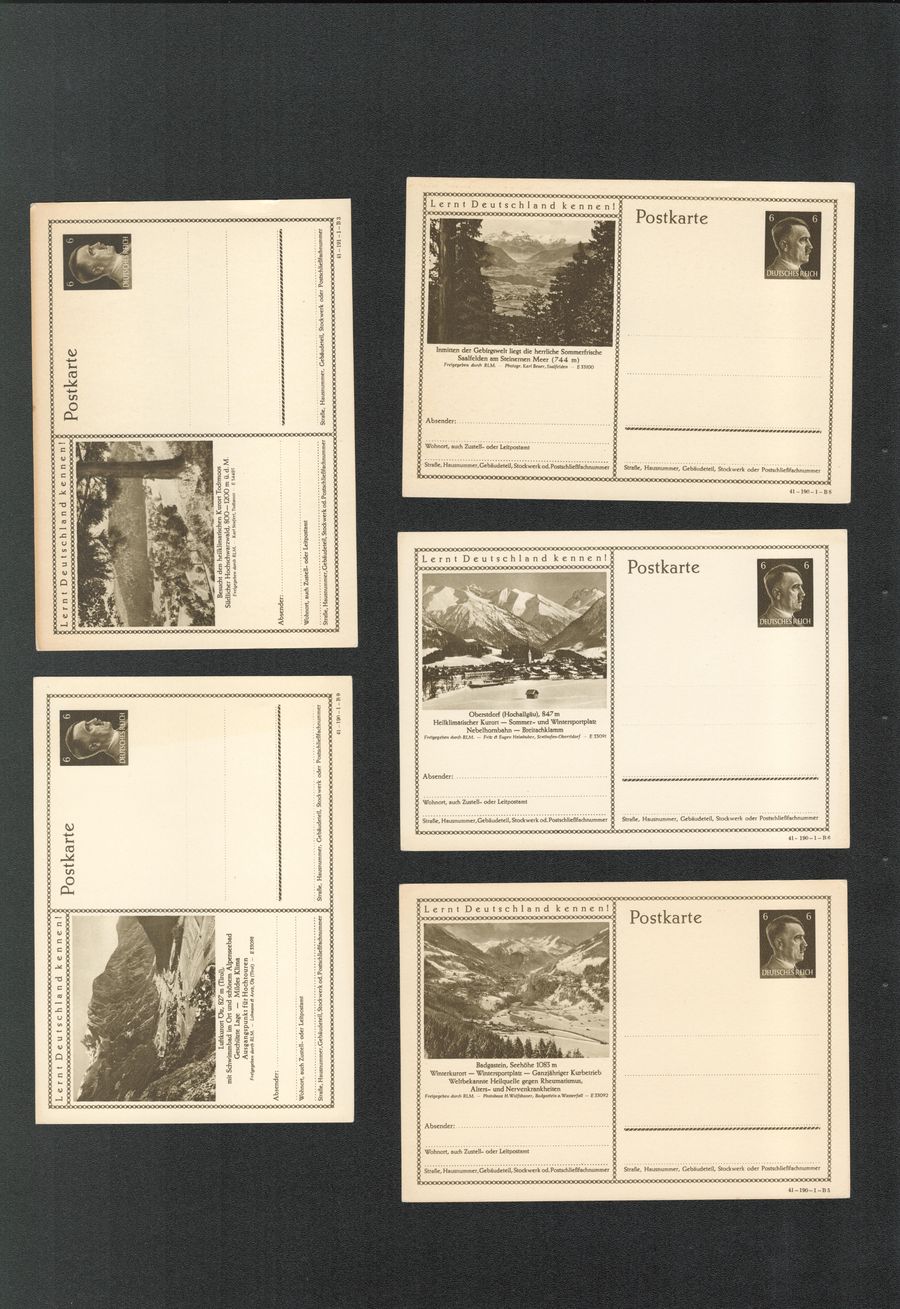
1054
$20
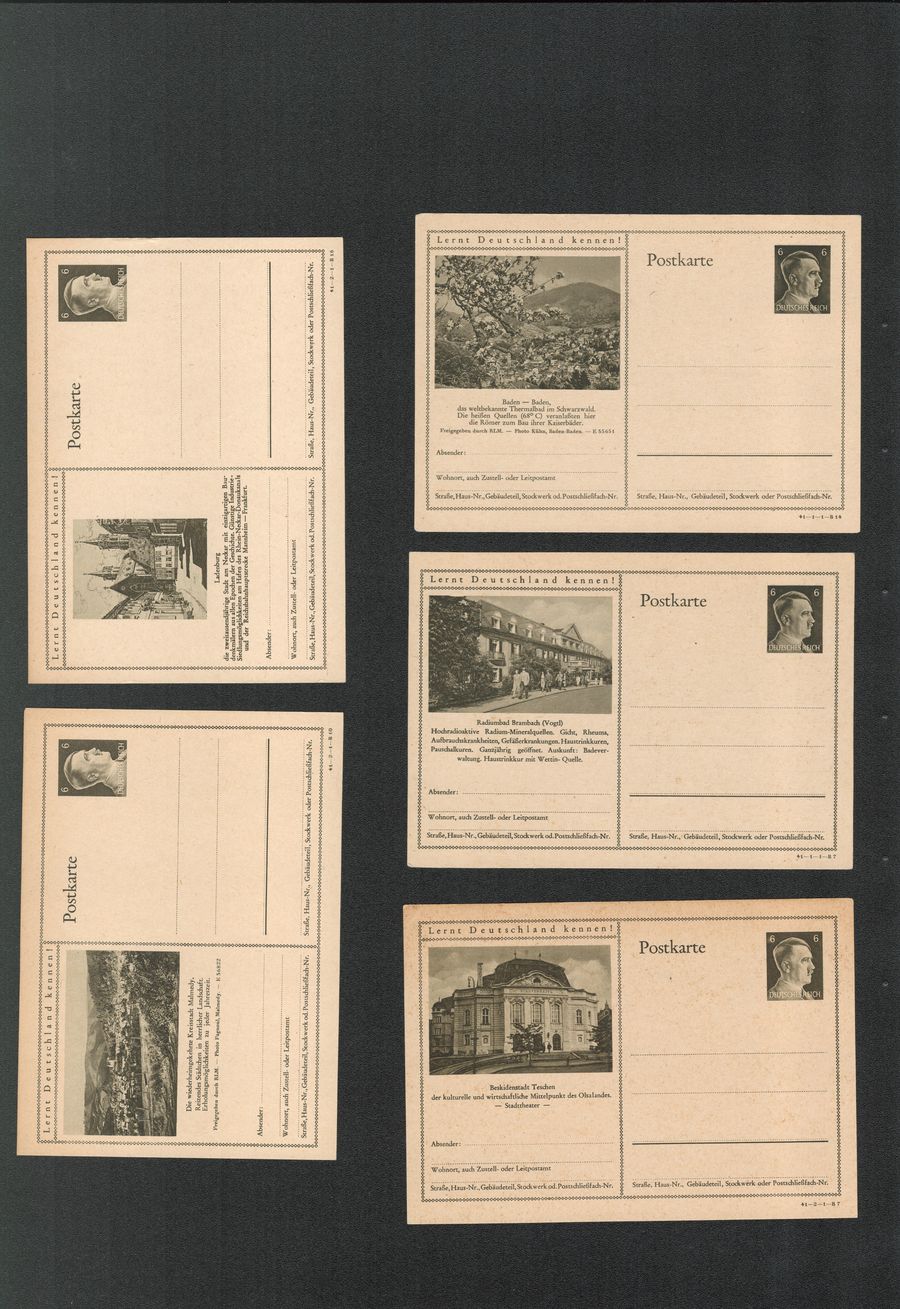
1055
$20
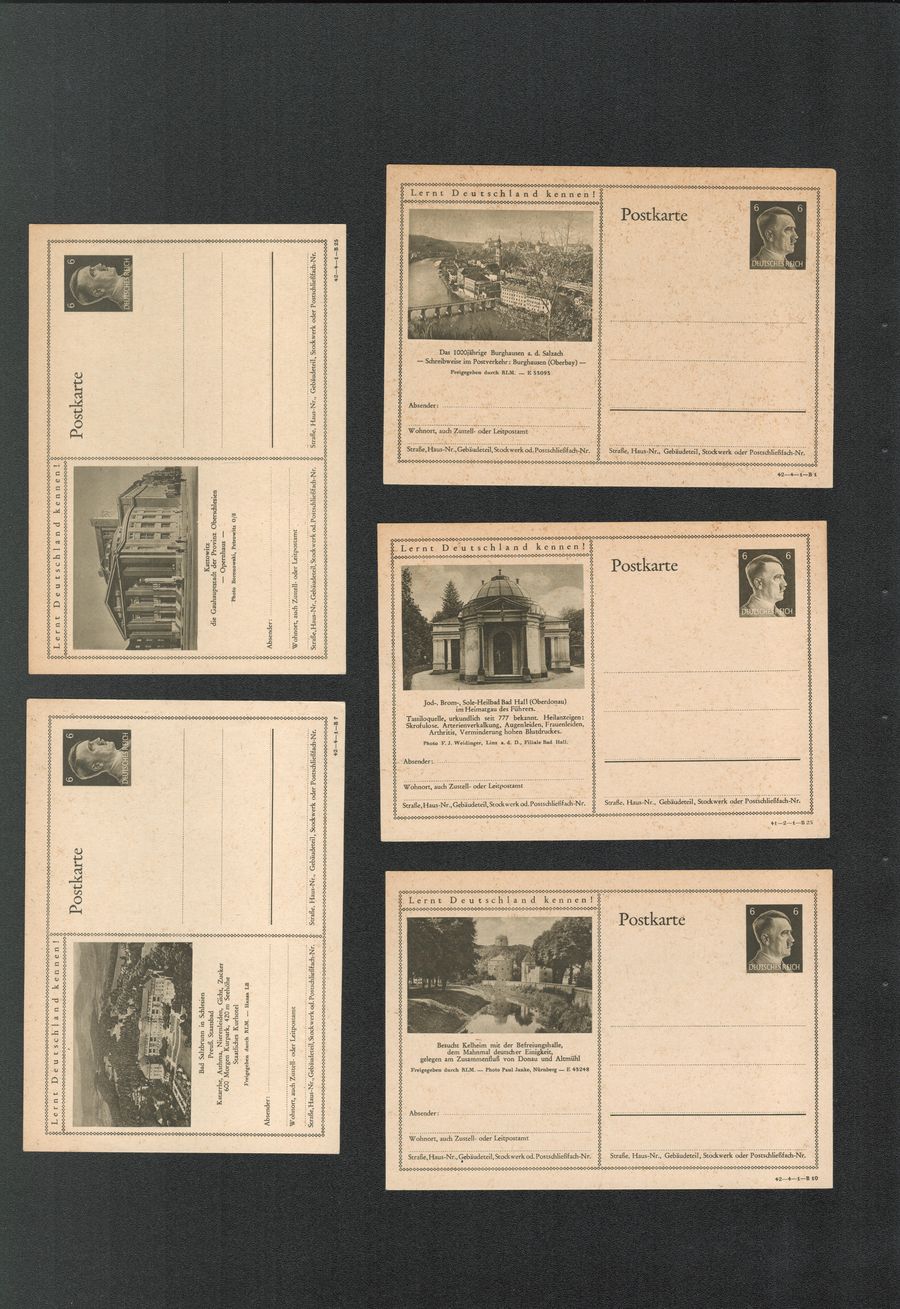
1056
$20
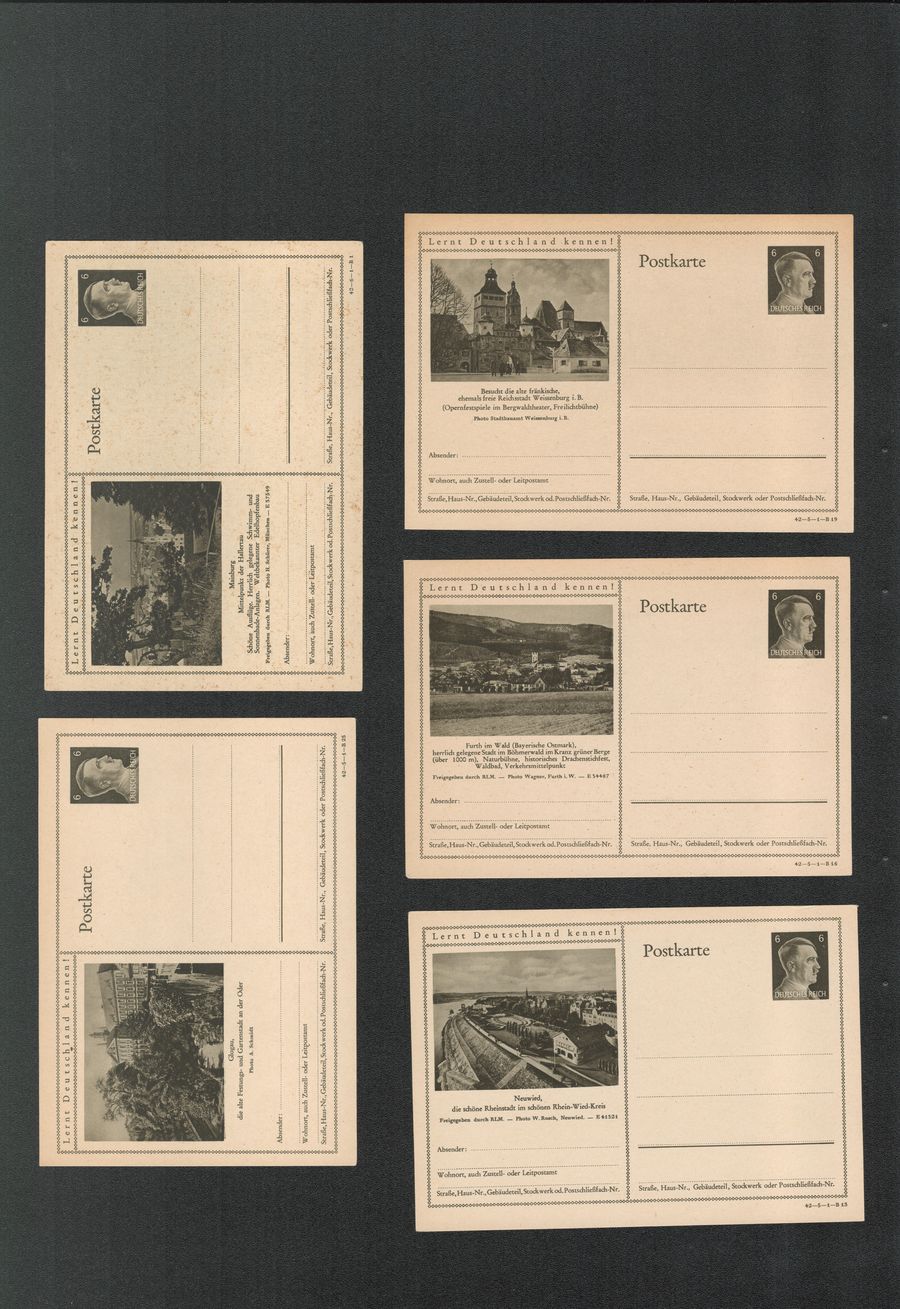
1057
$20
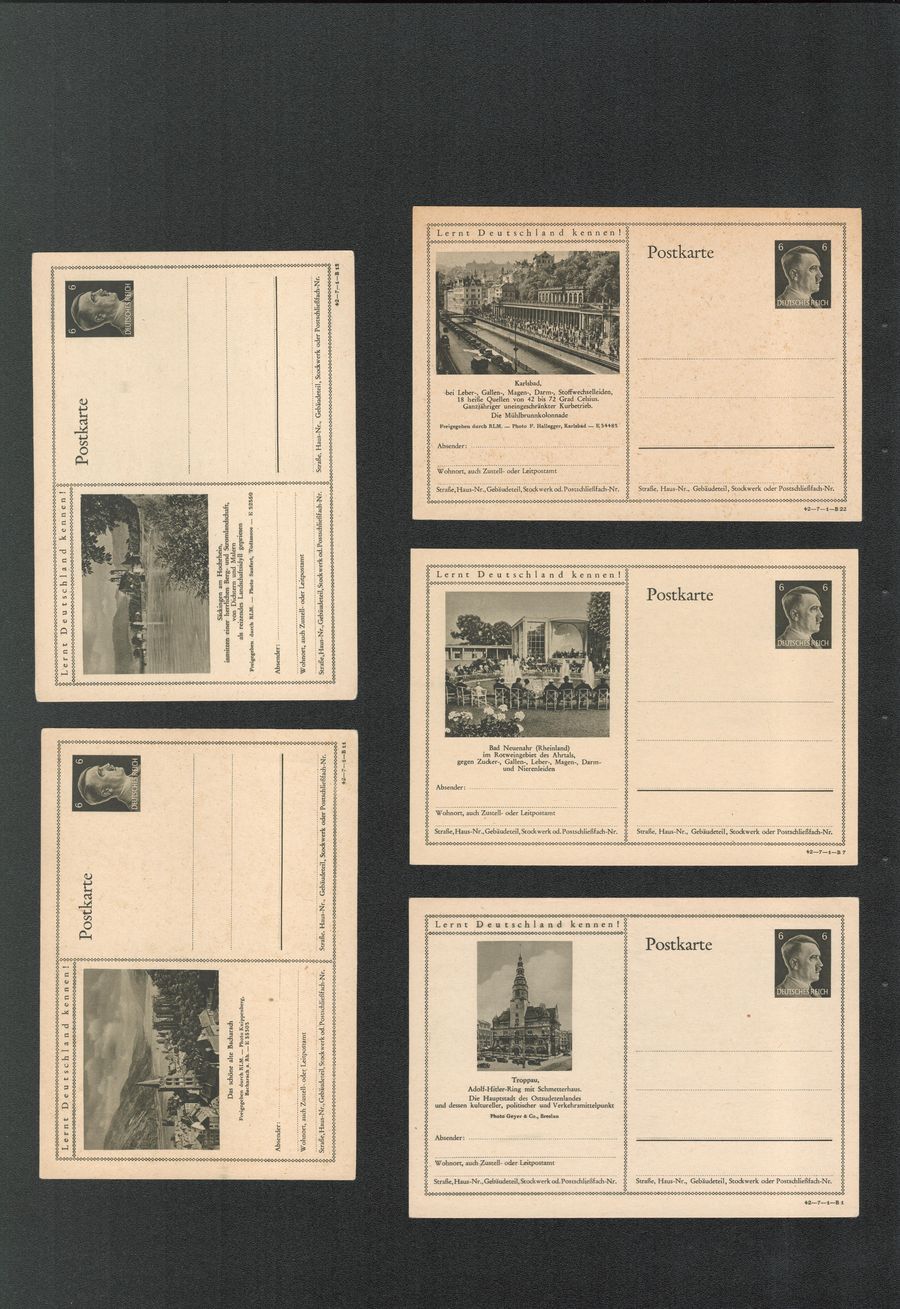
1058
$20
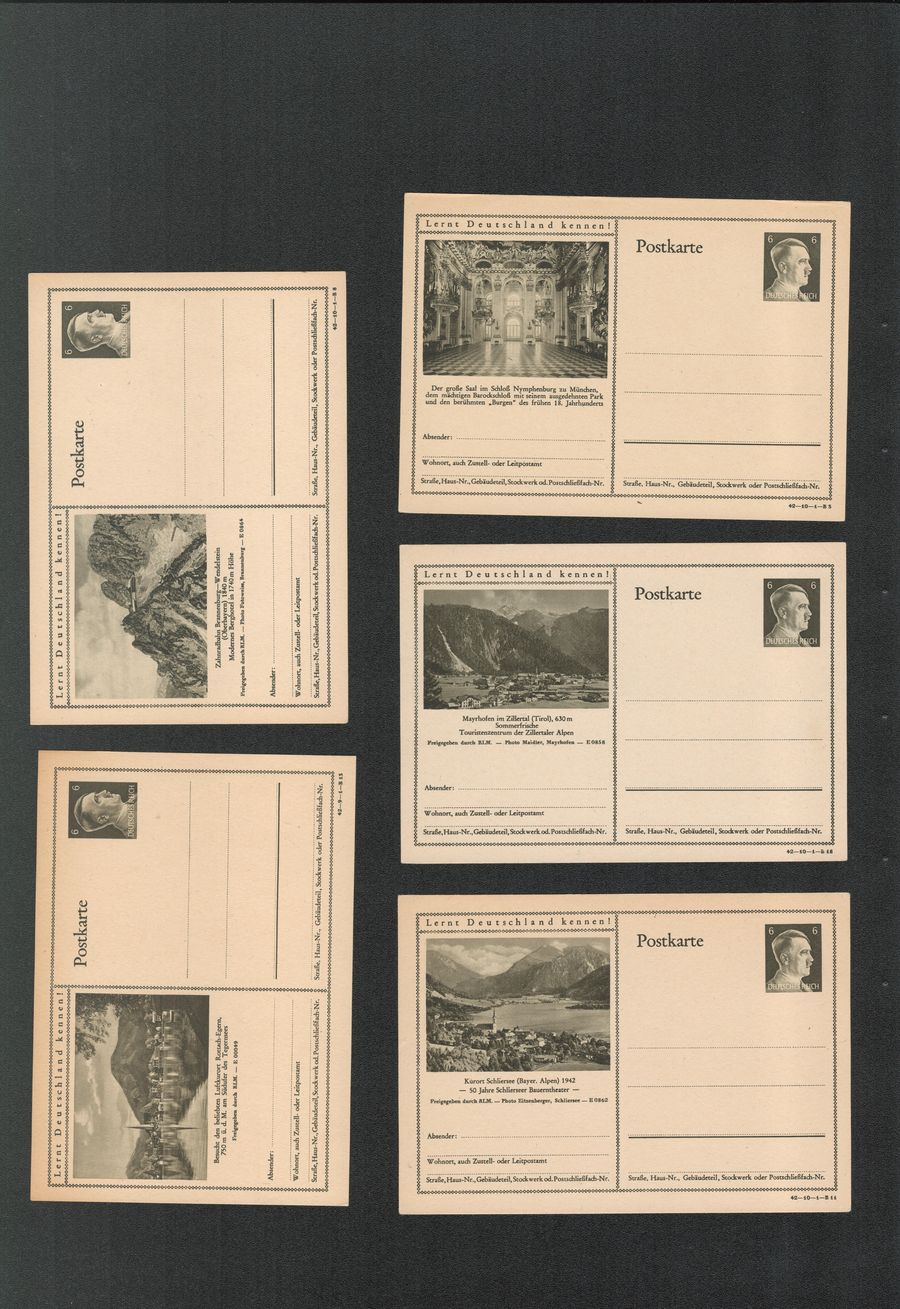
1059
$20
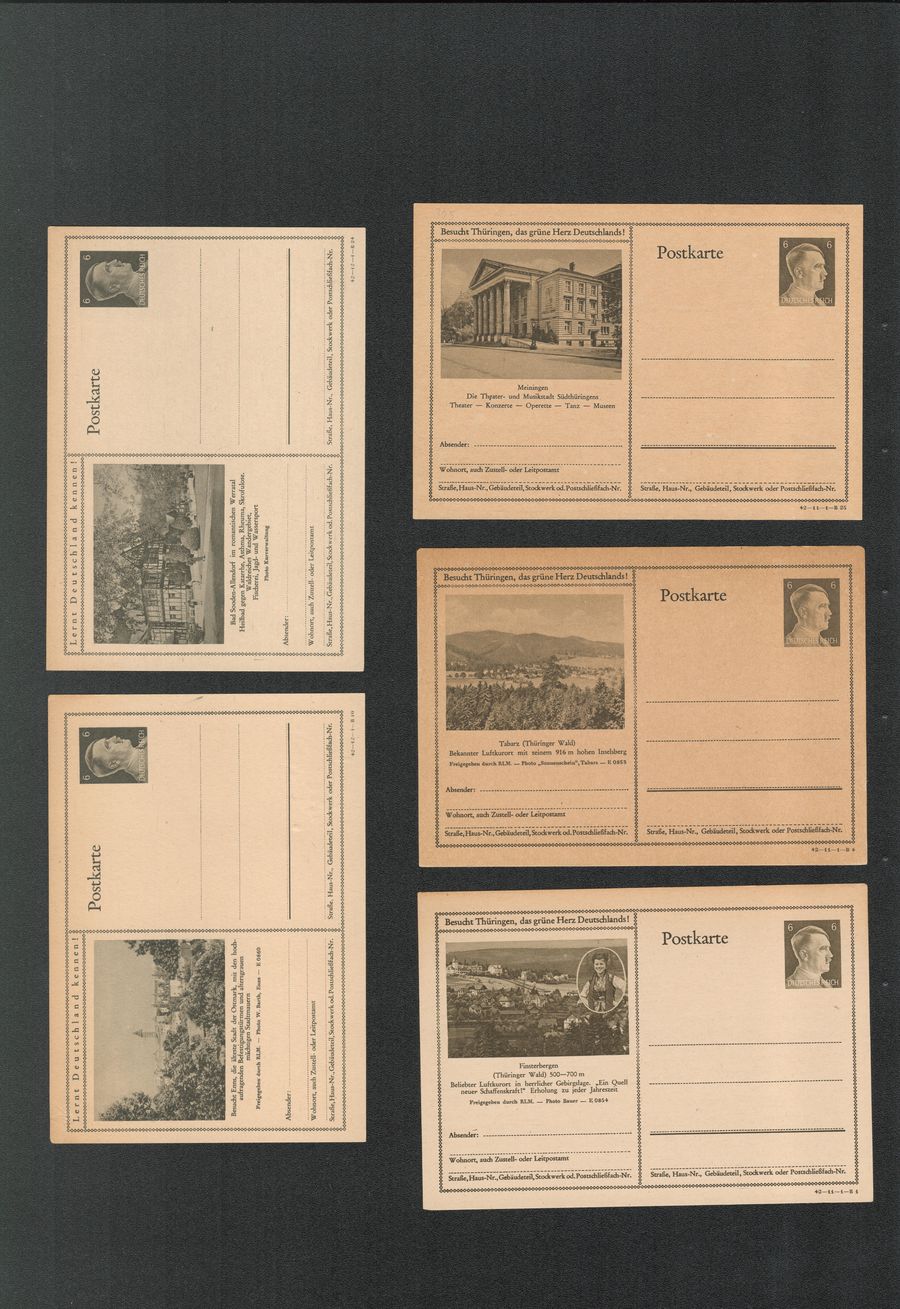
1060
$20
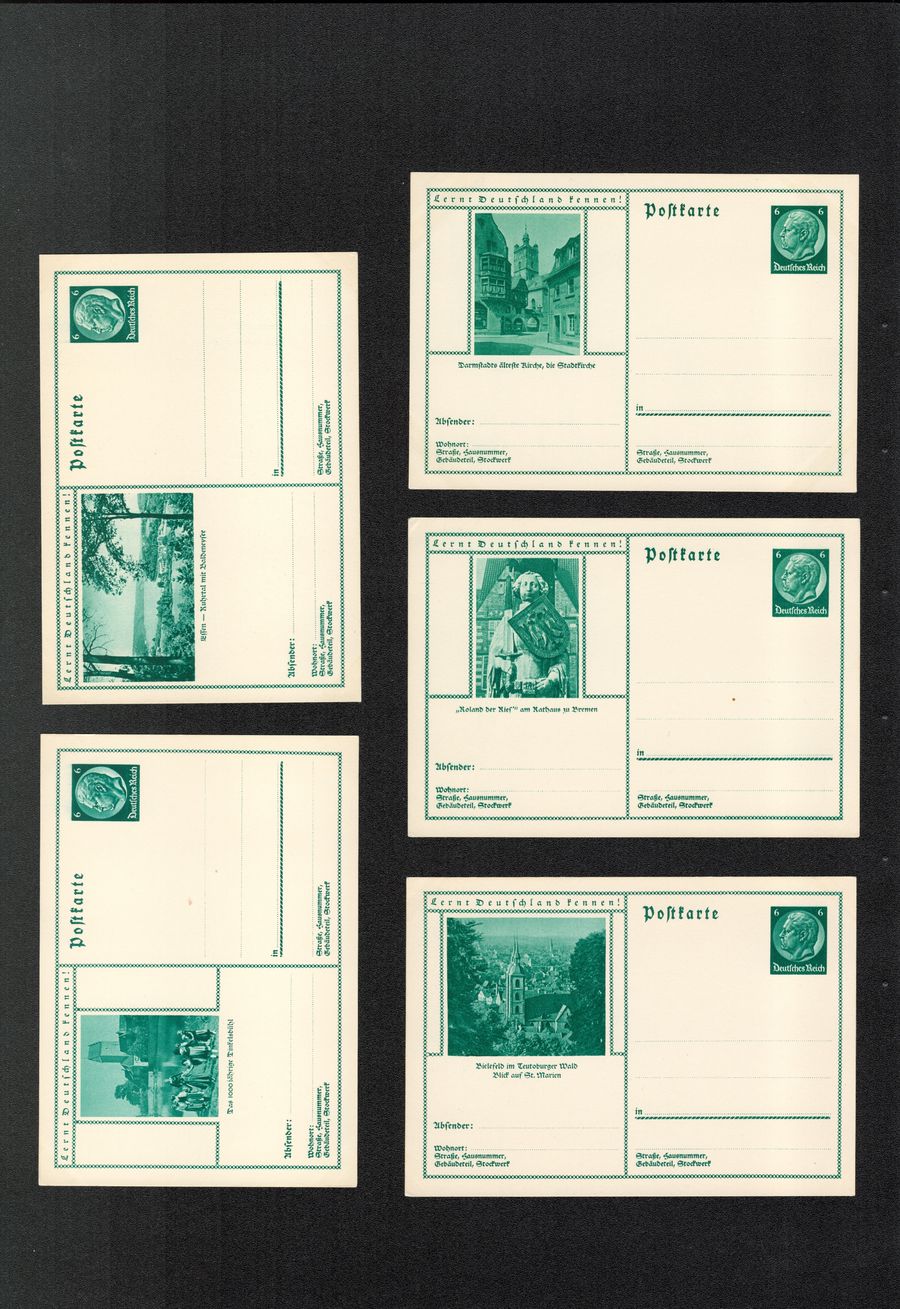
1061
$20
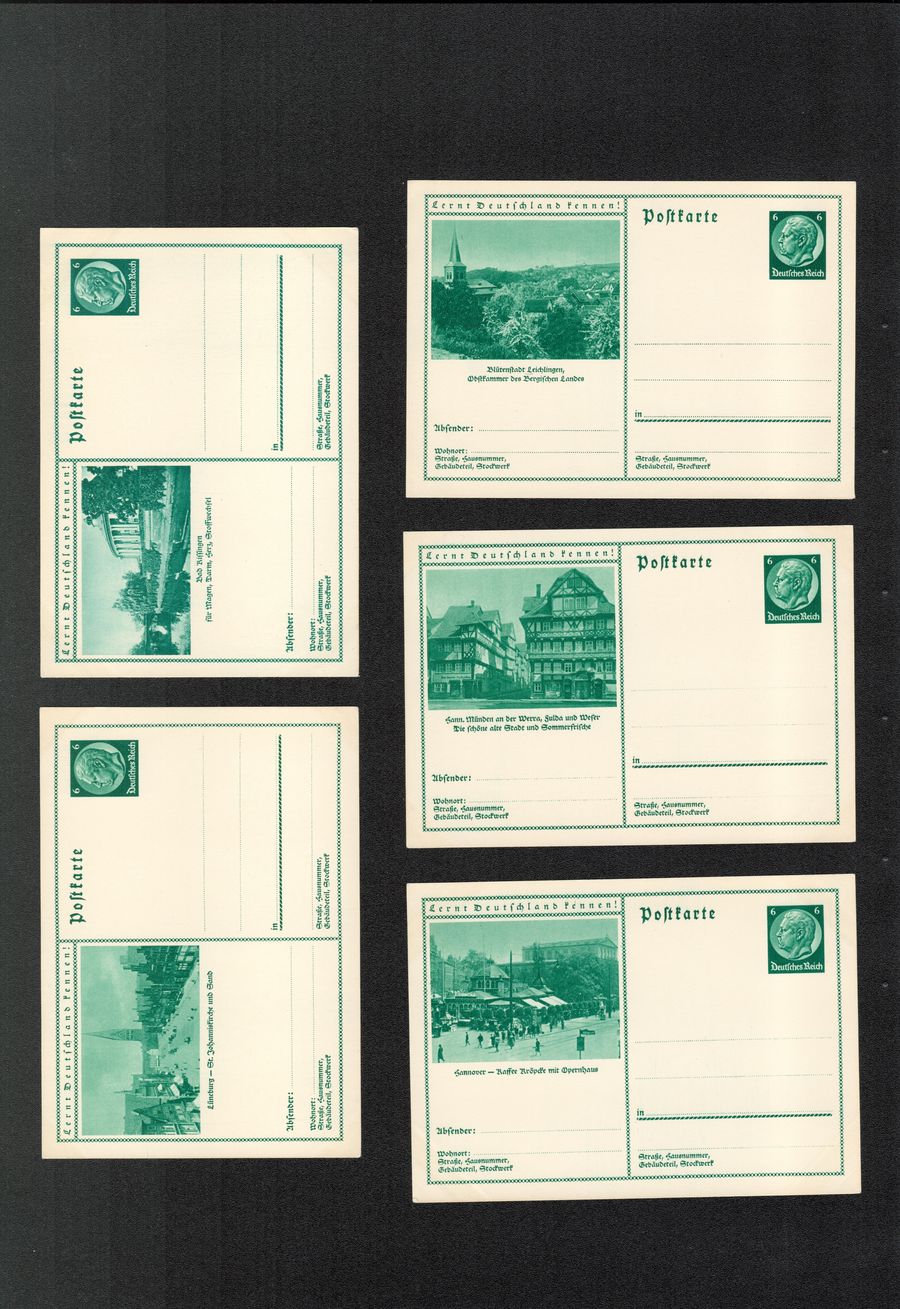
1062
$20
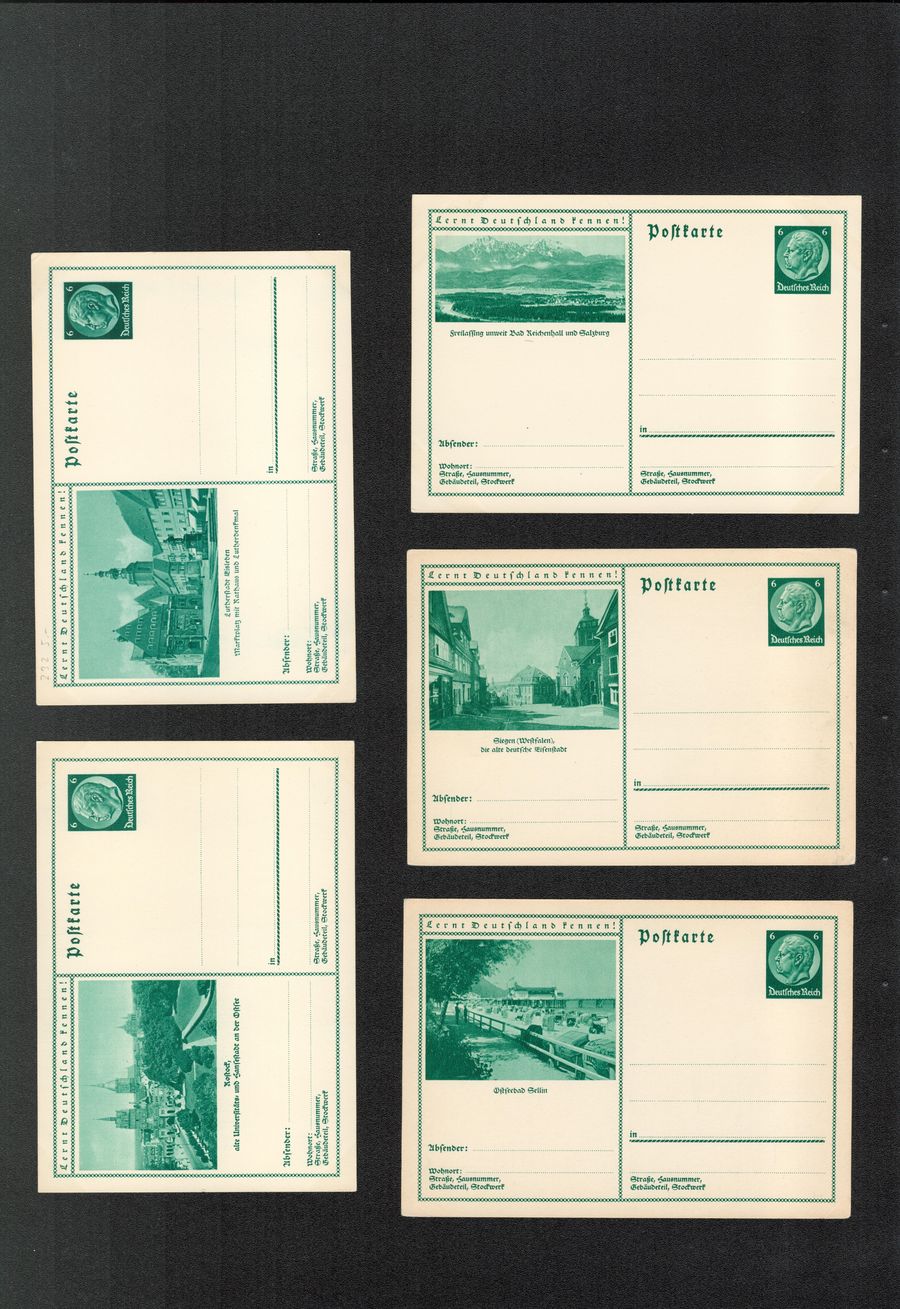
1063
$20
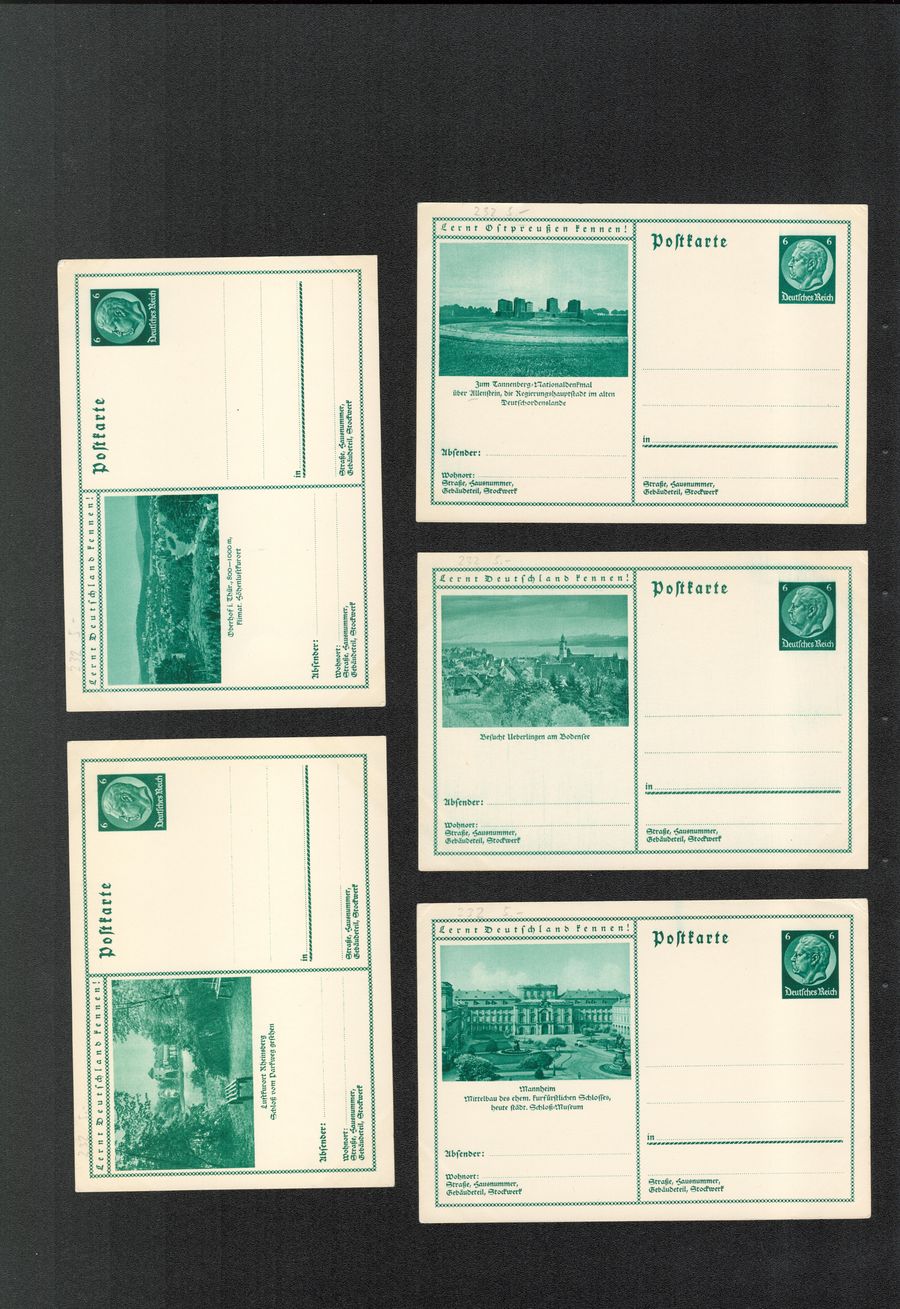
1064
$20
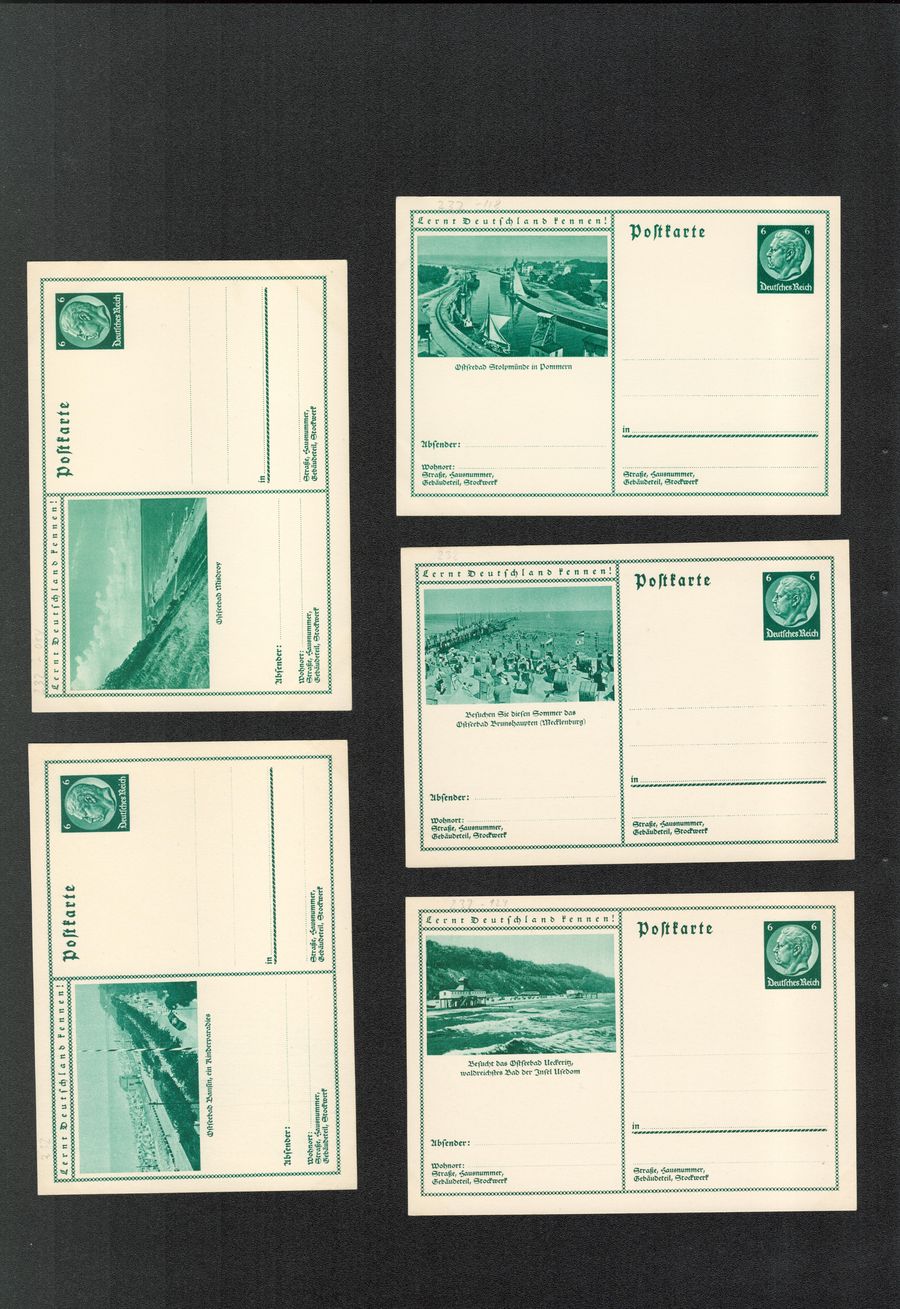
1065
$35
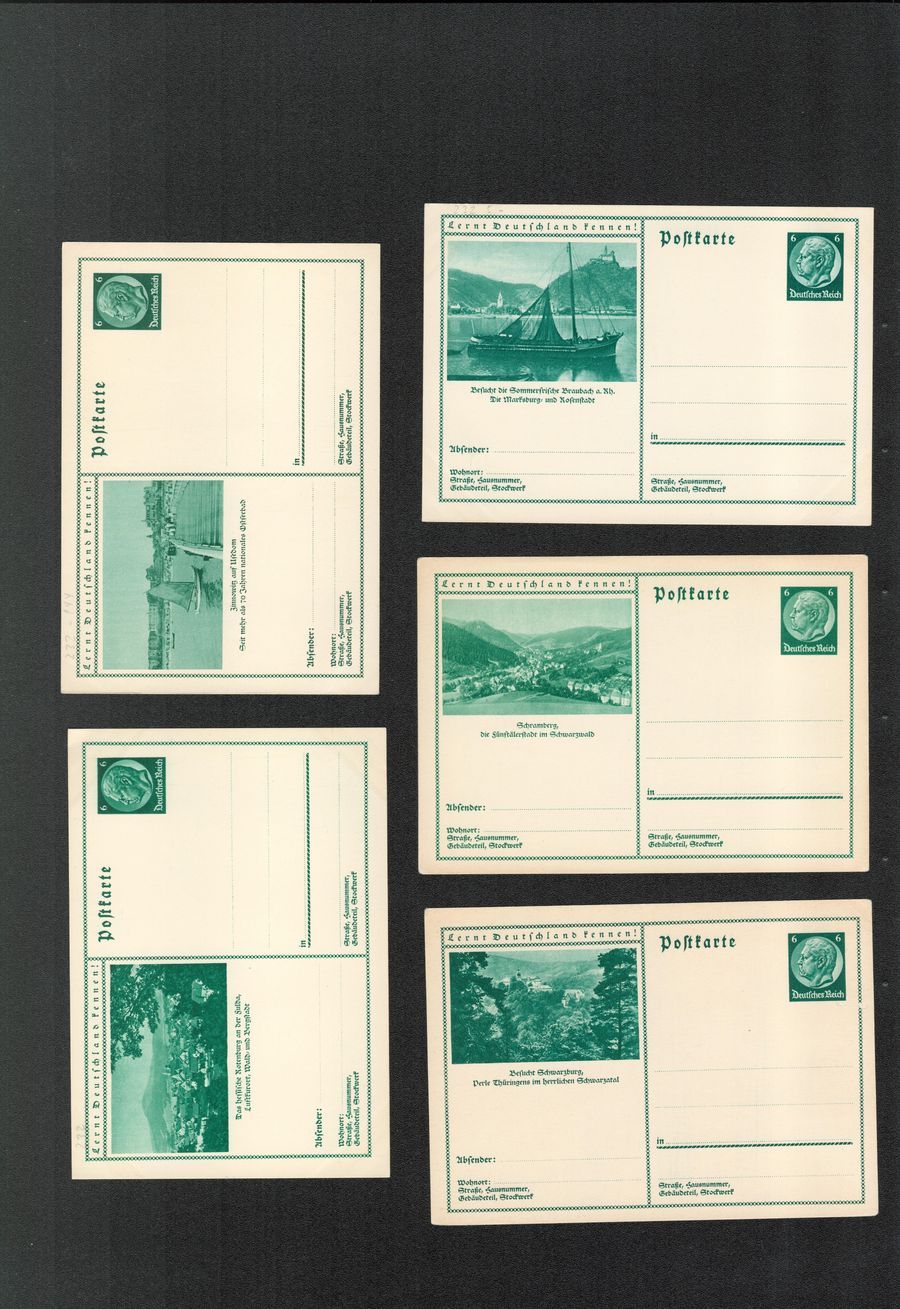
1066
$20
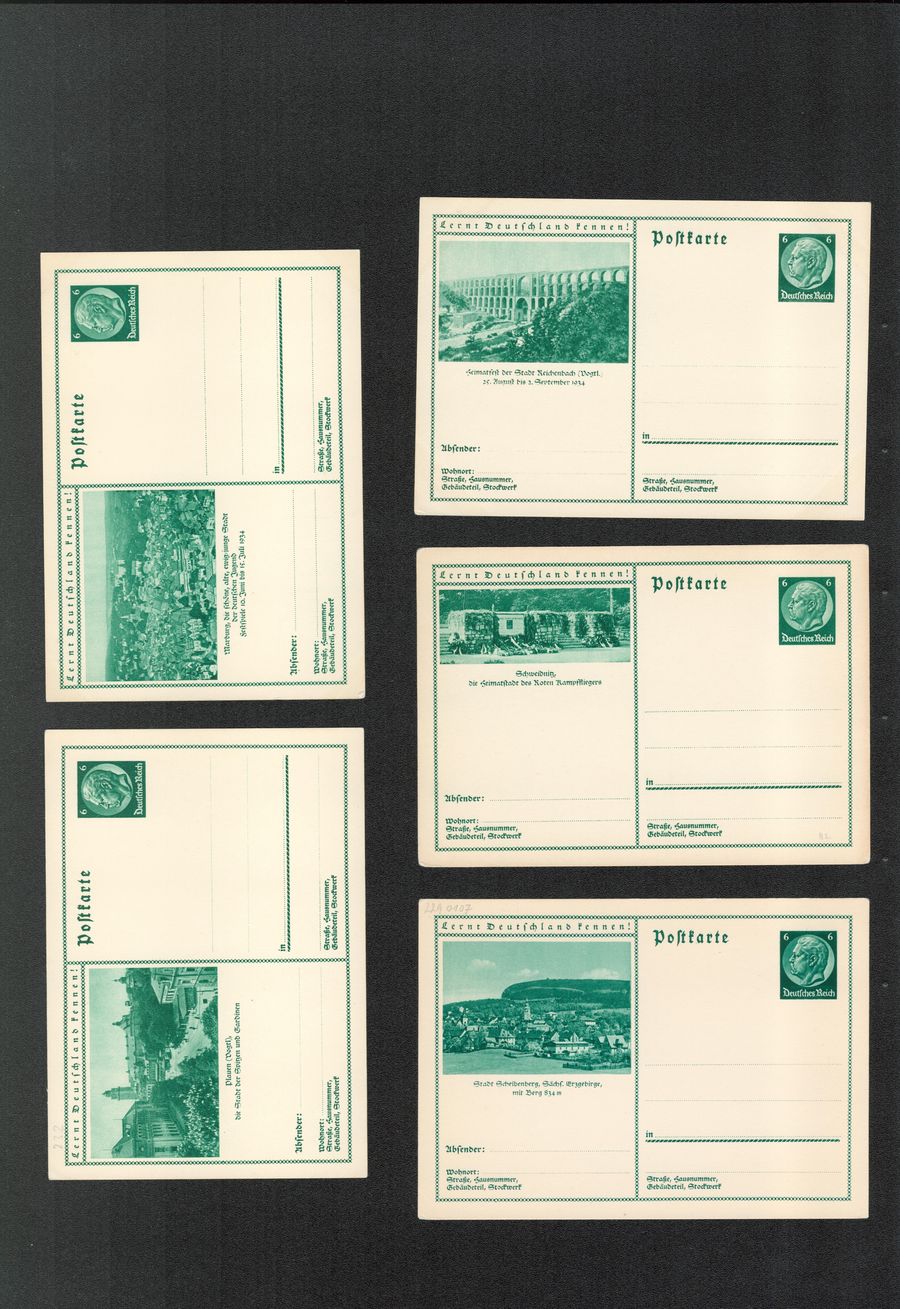
1067
$20
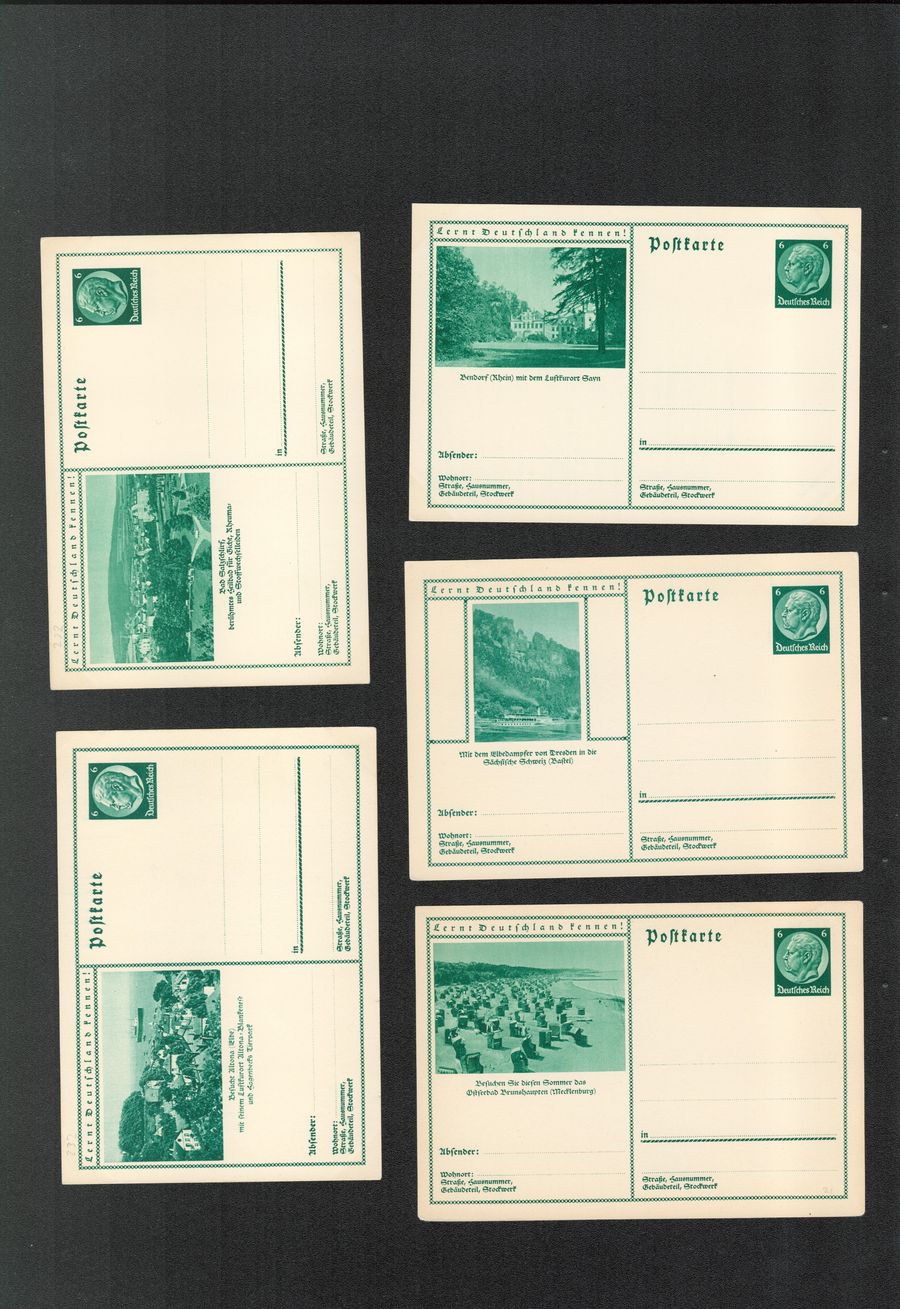
1068
$30
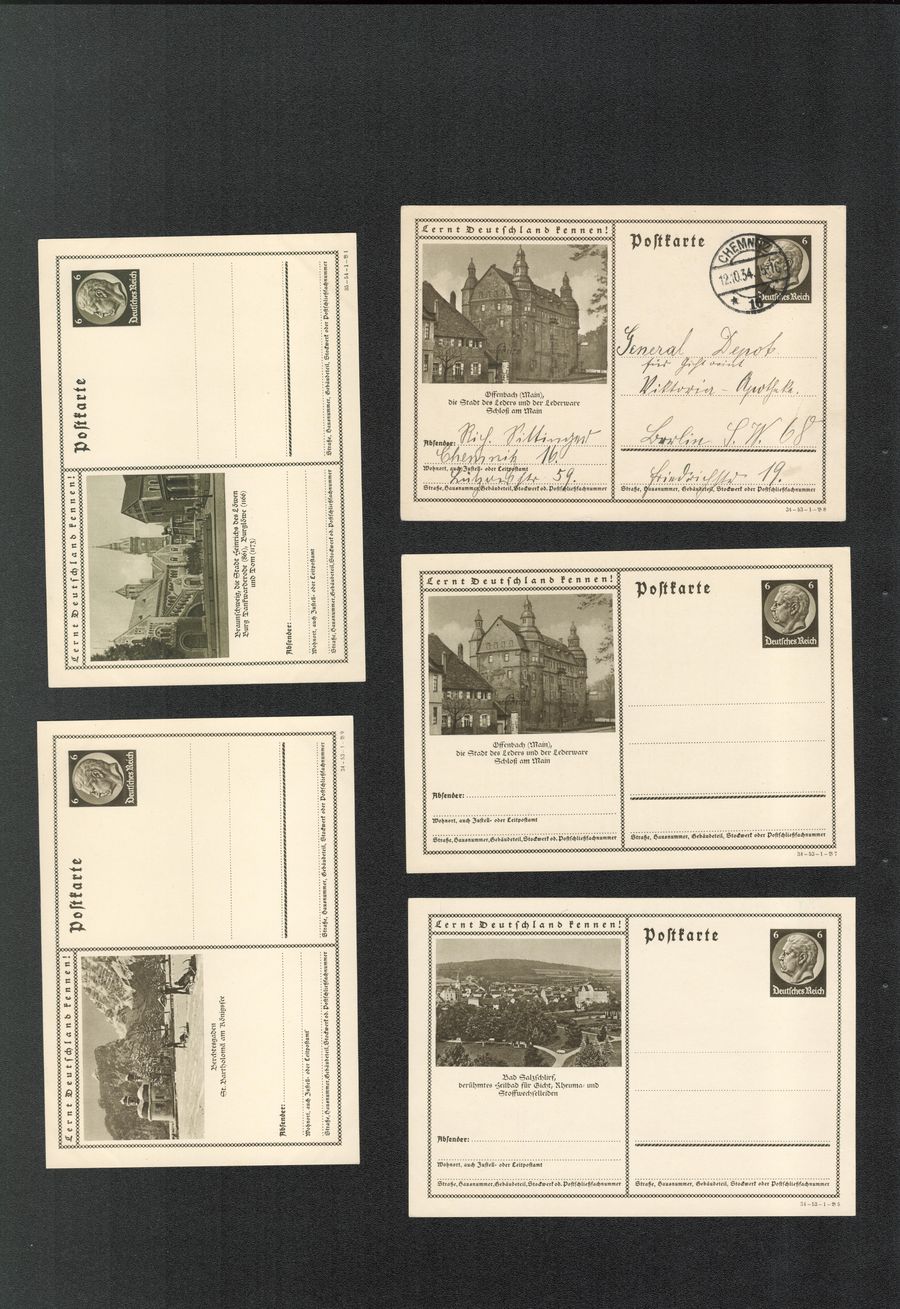
1069
$20
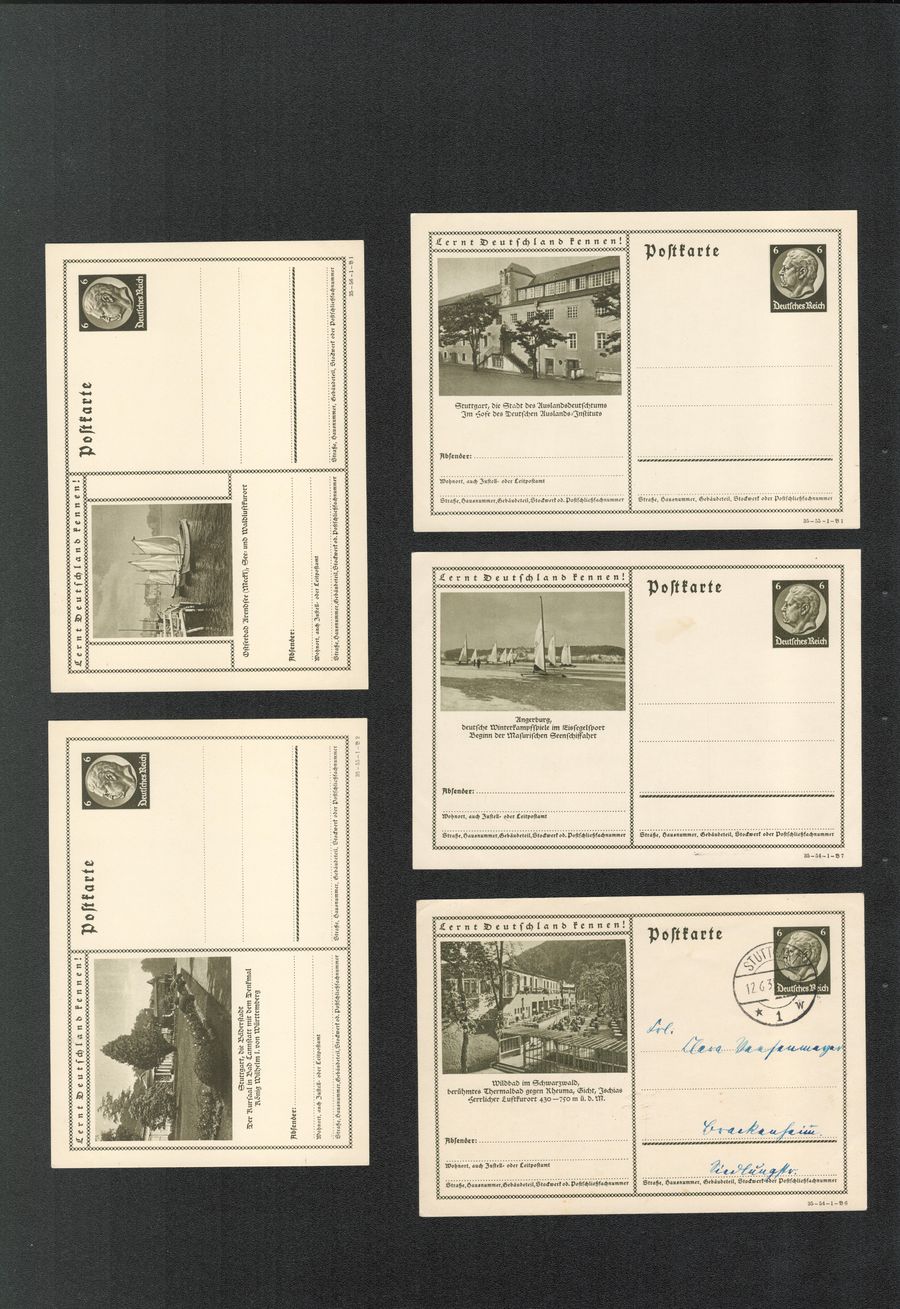
1070
$20
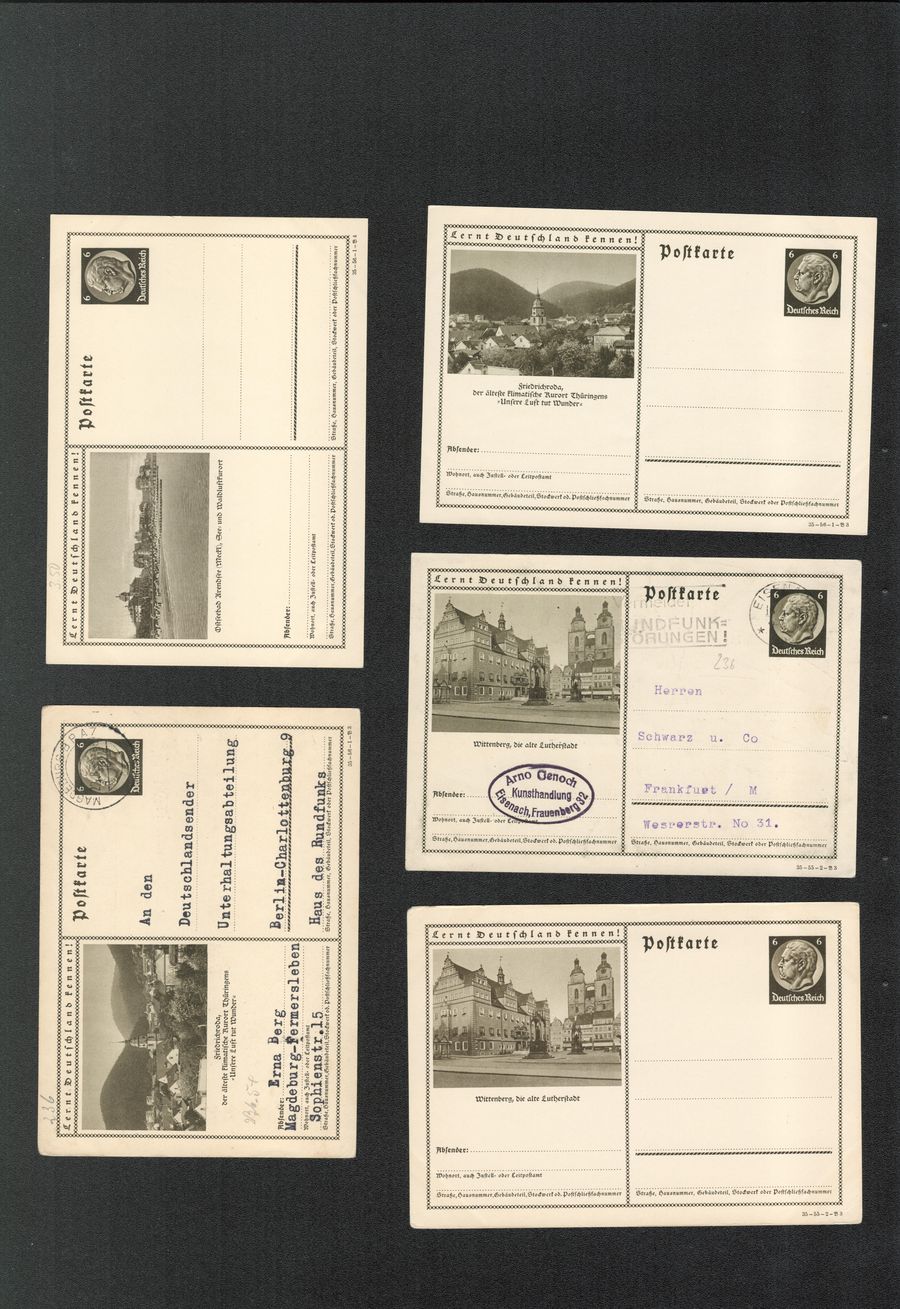
1071
$20
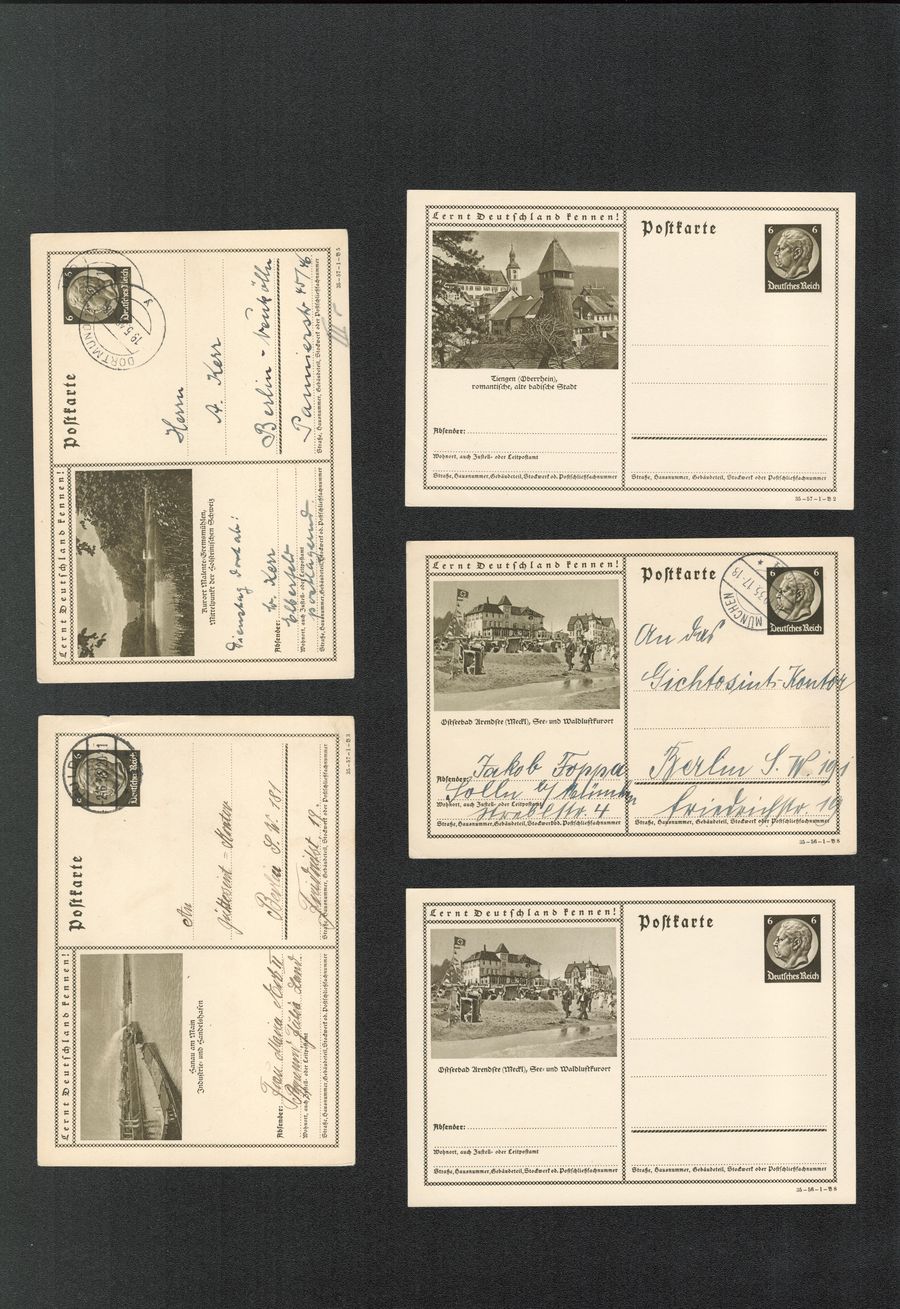
1072
$20
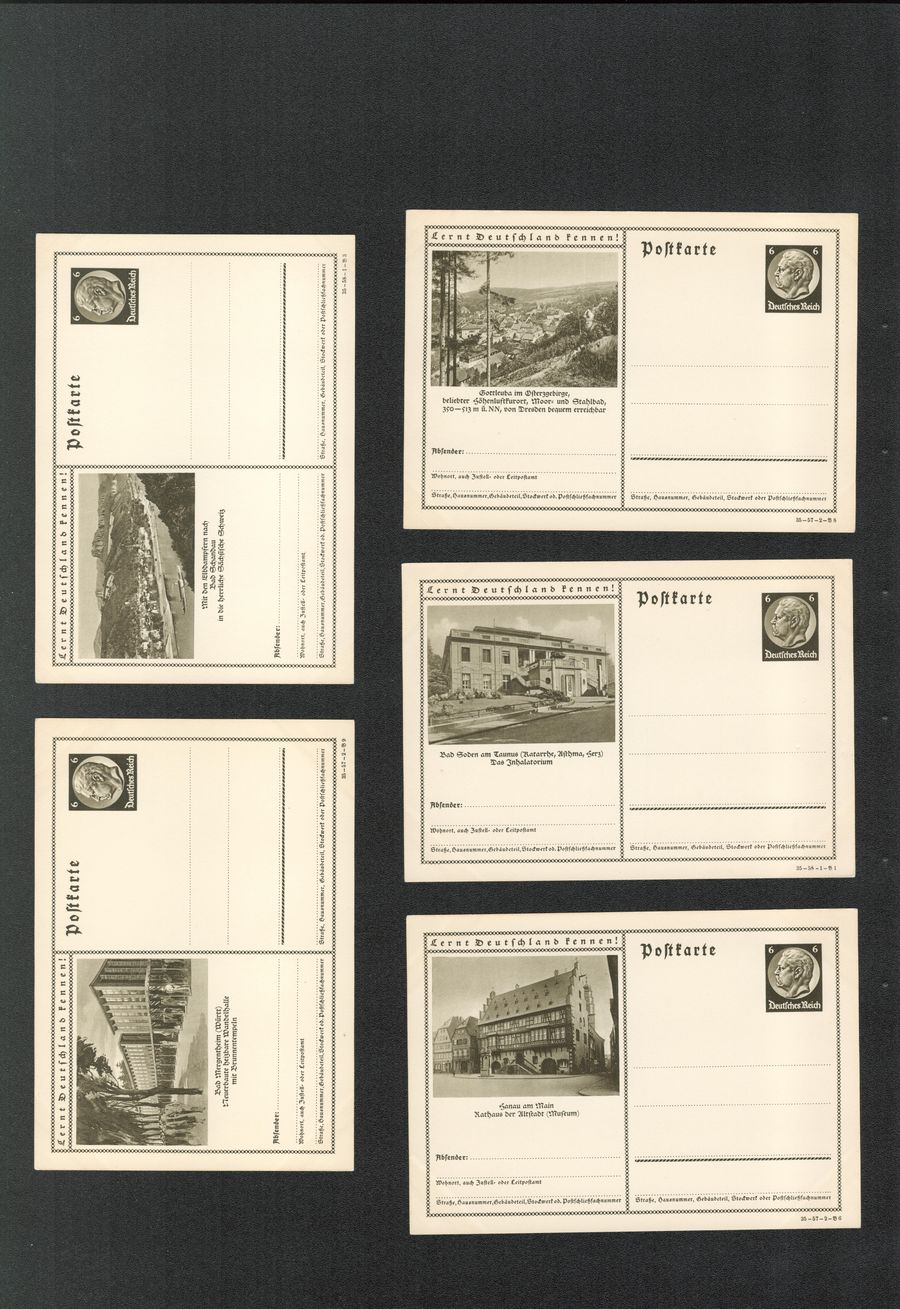
1073
$20
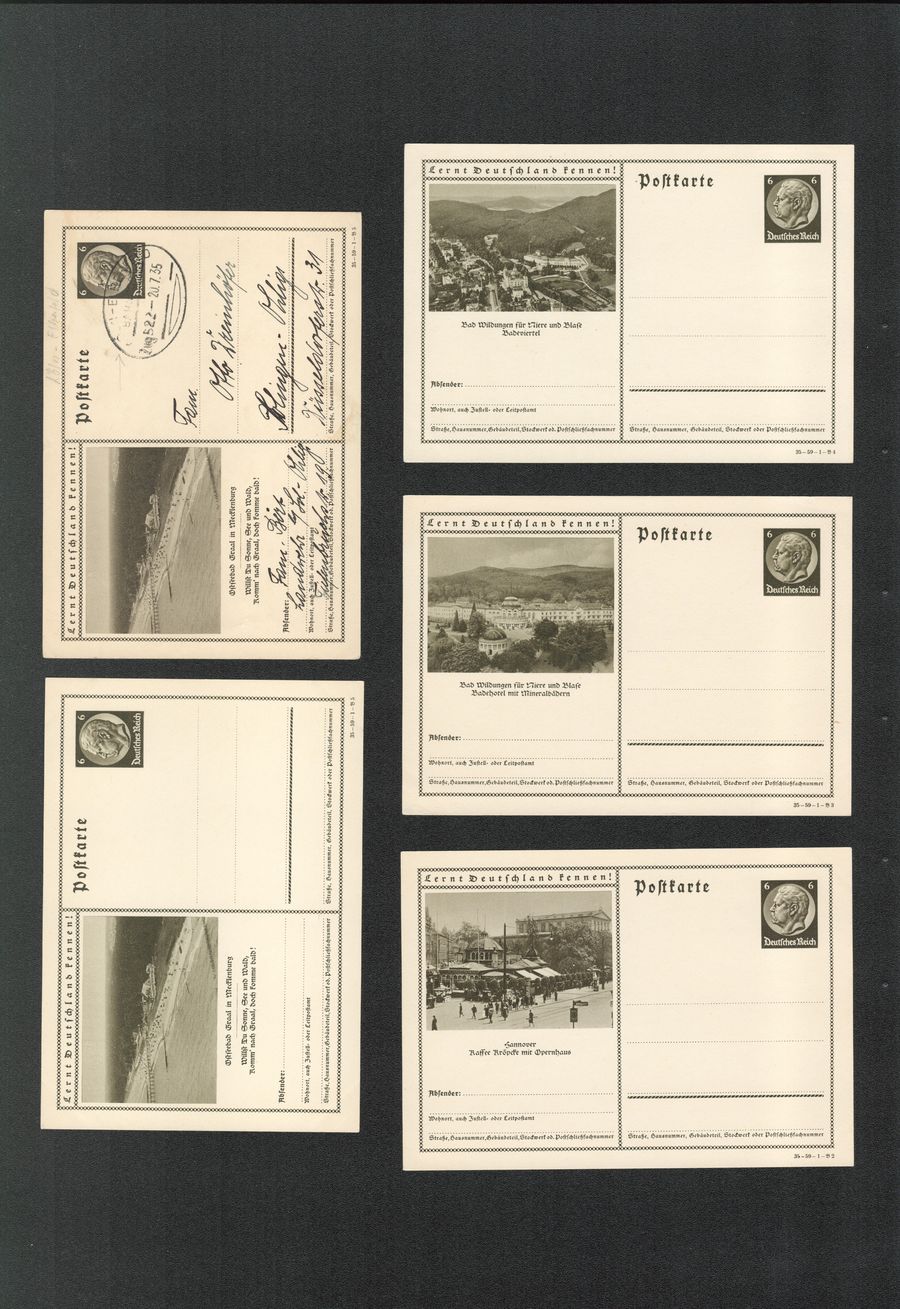
1074
$20
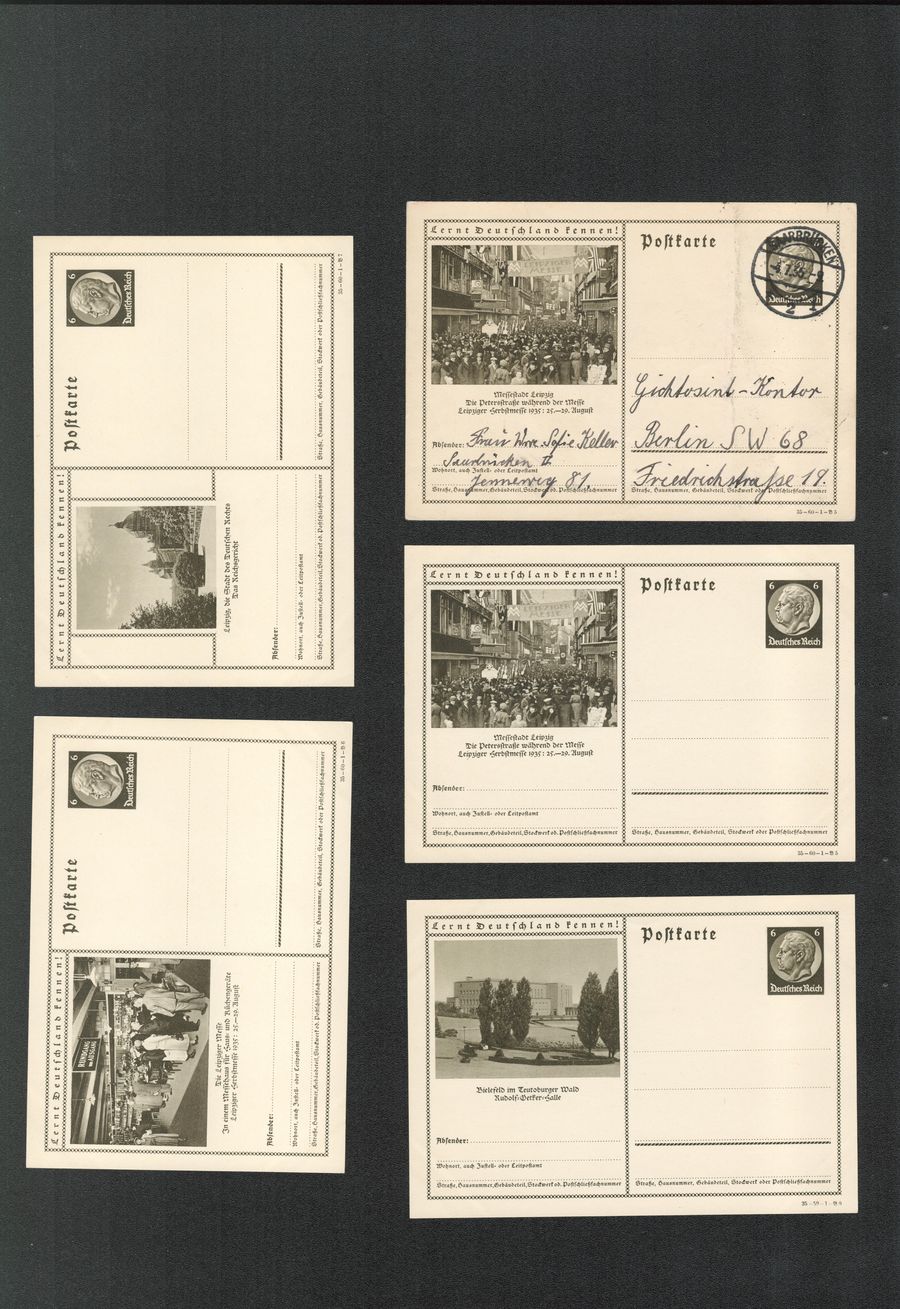
1075
$20
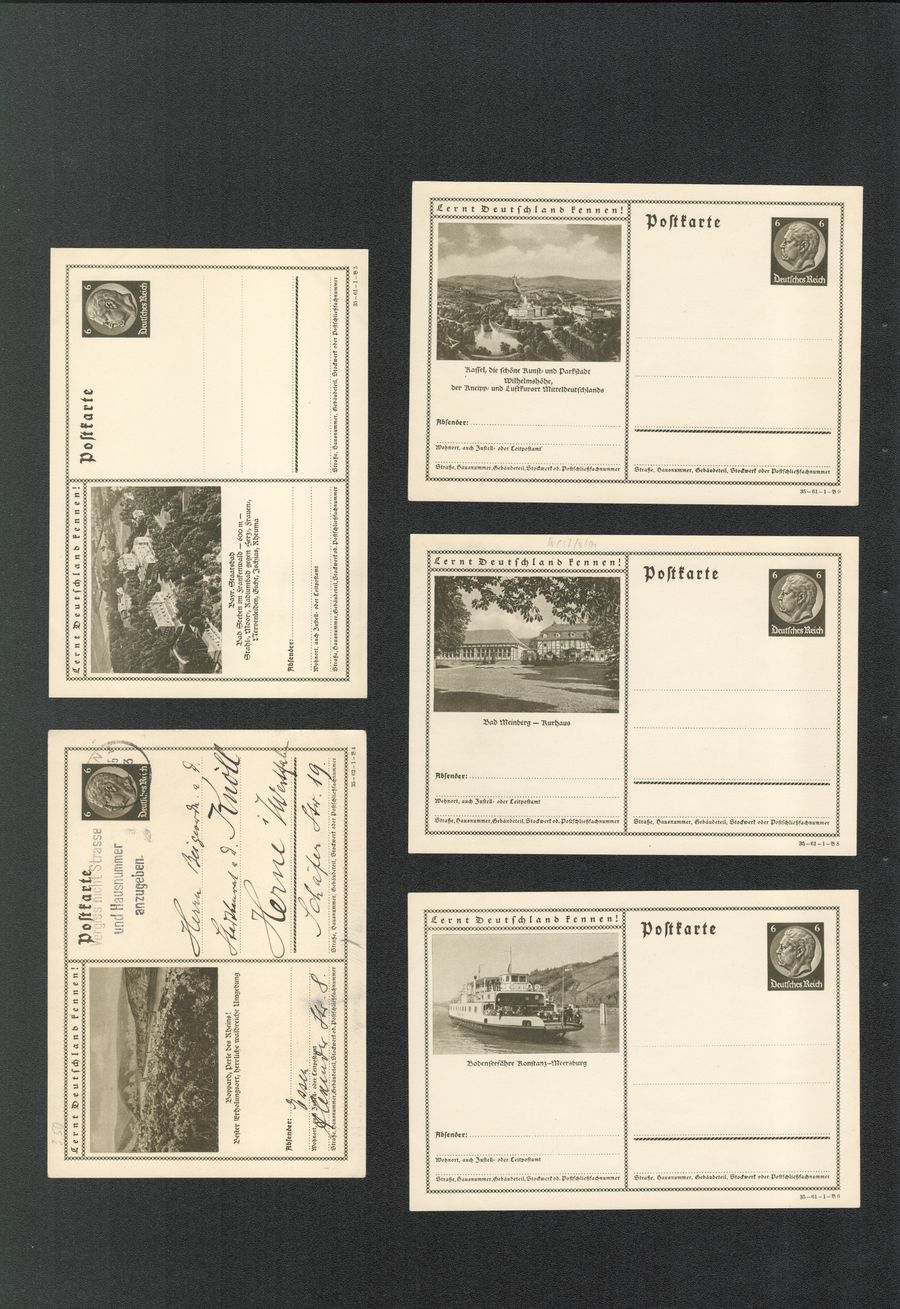
1076
$20
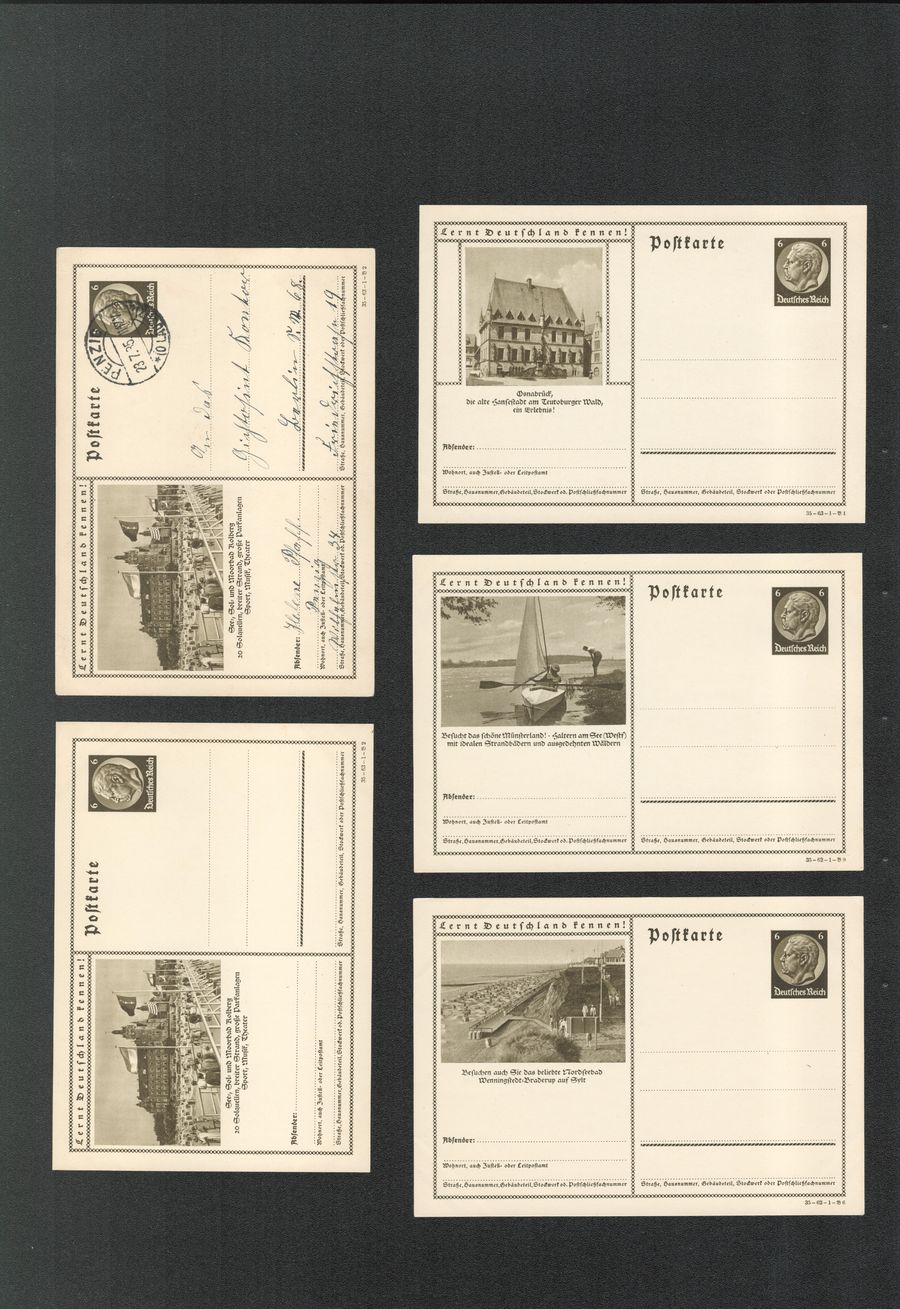
1077
$20
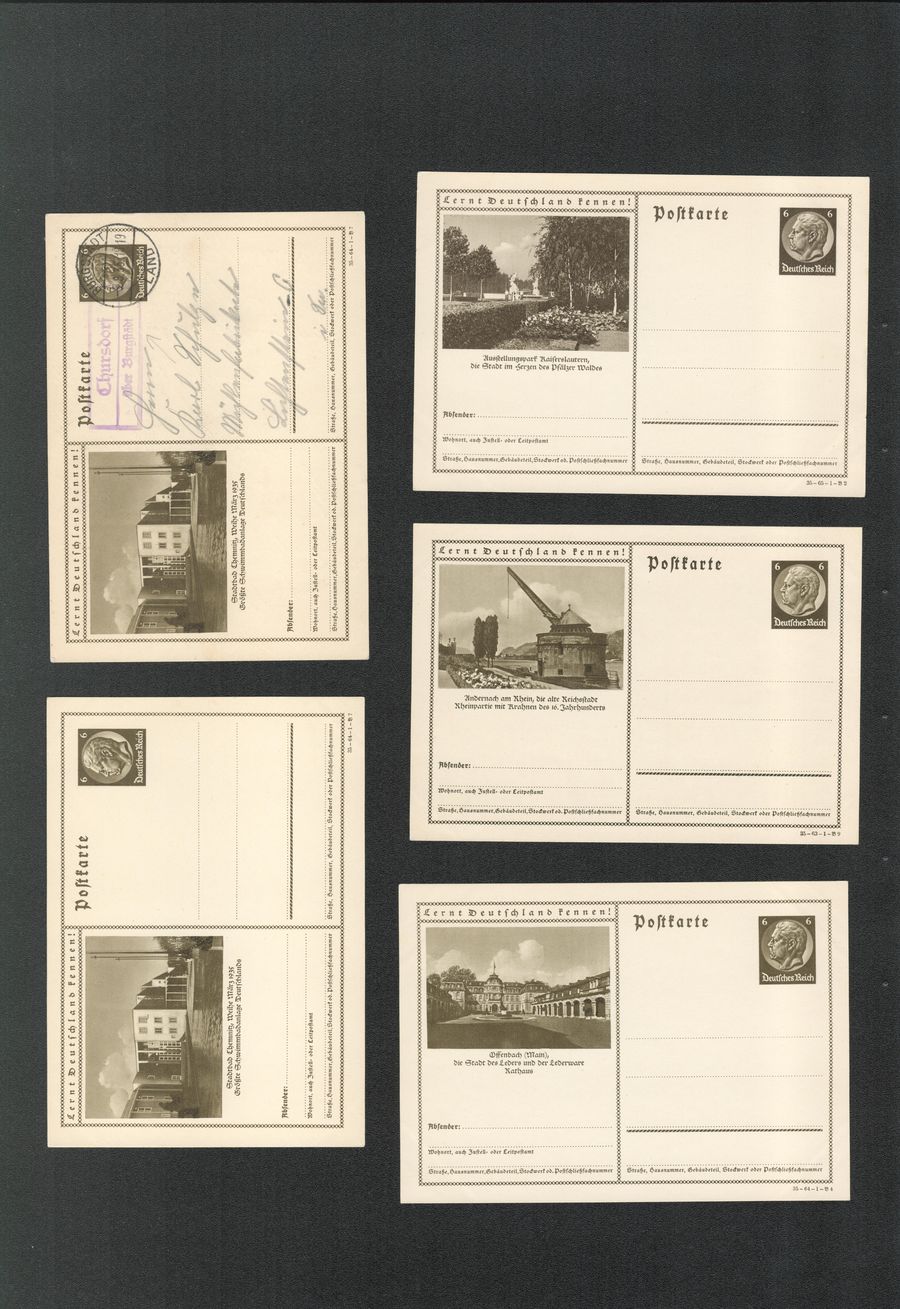
1078
$20
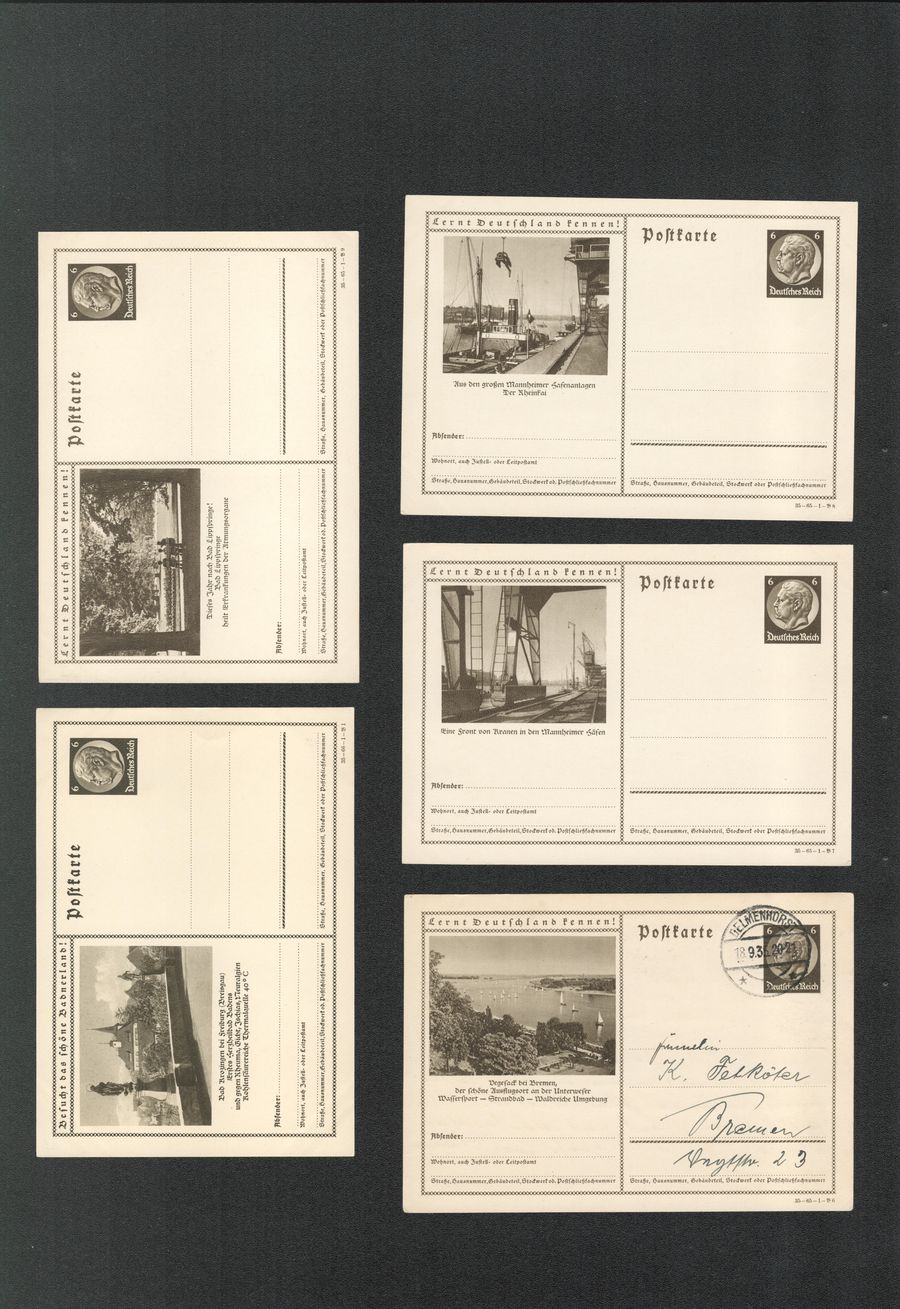
1079
$20
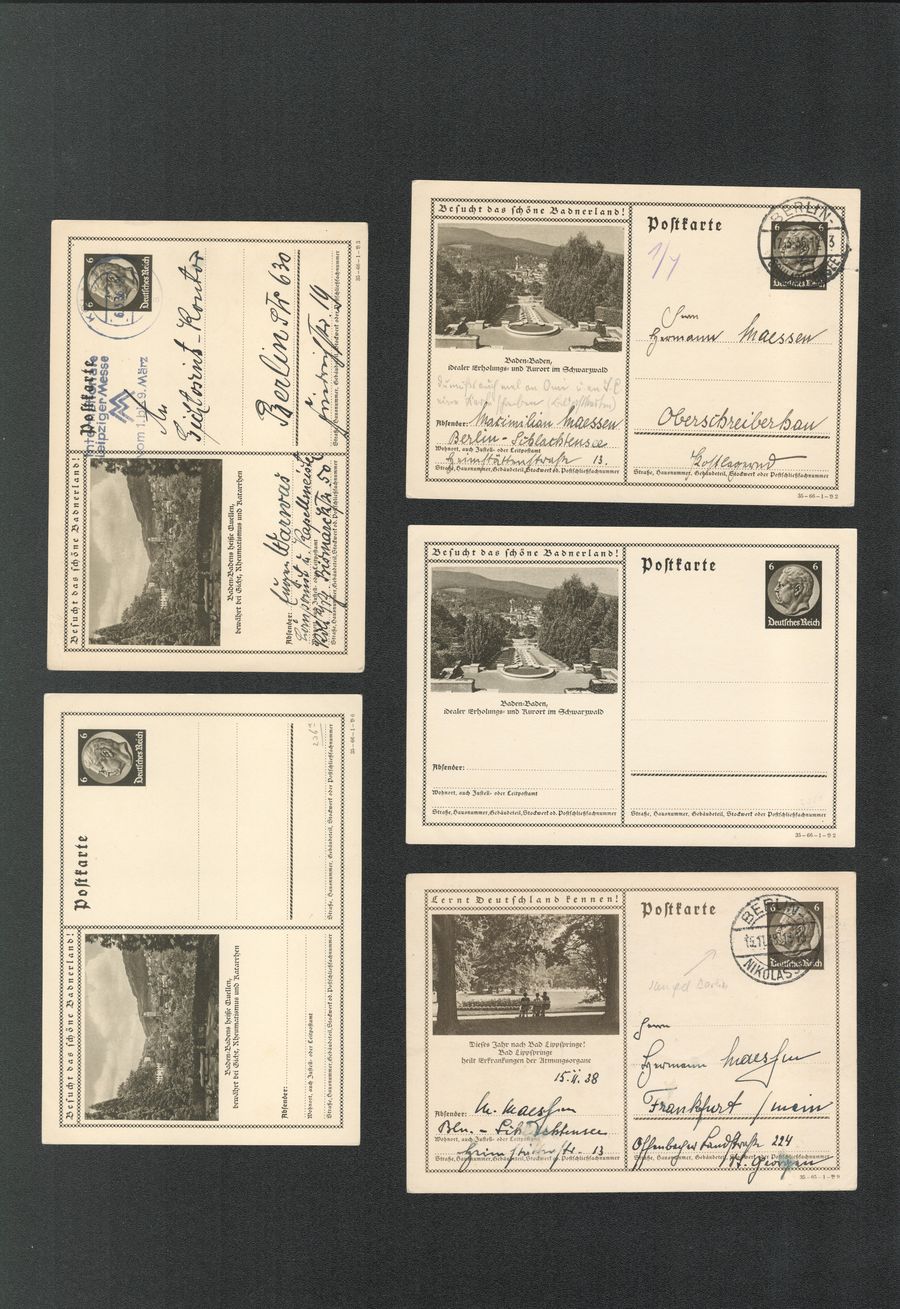
1080
$20
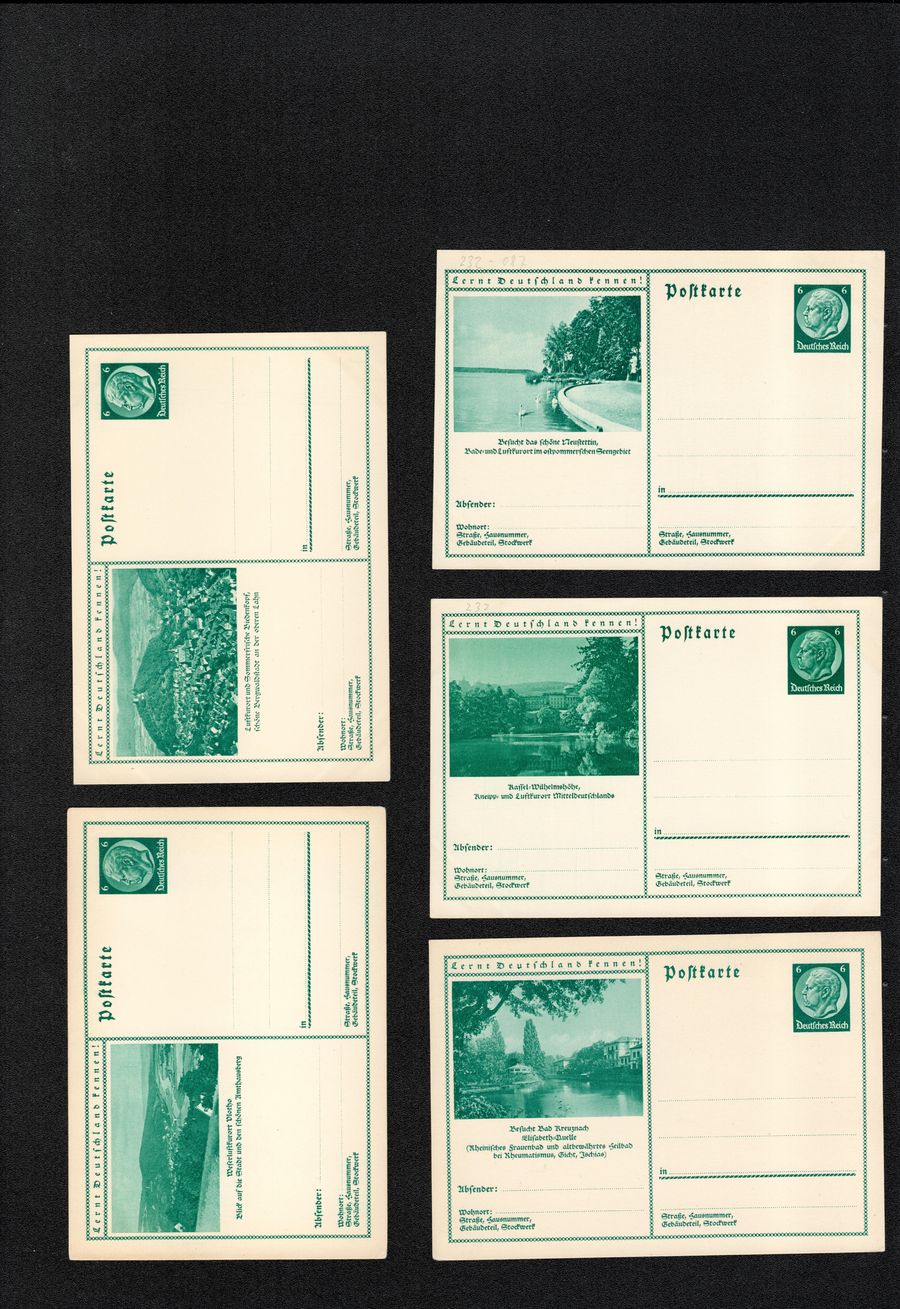
1081
$20
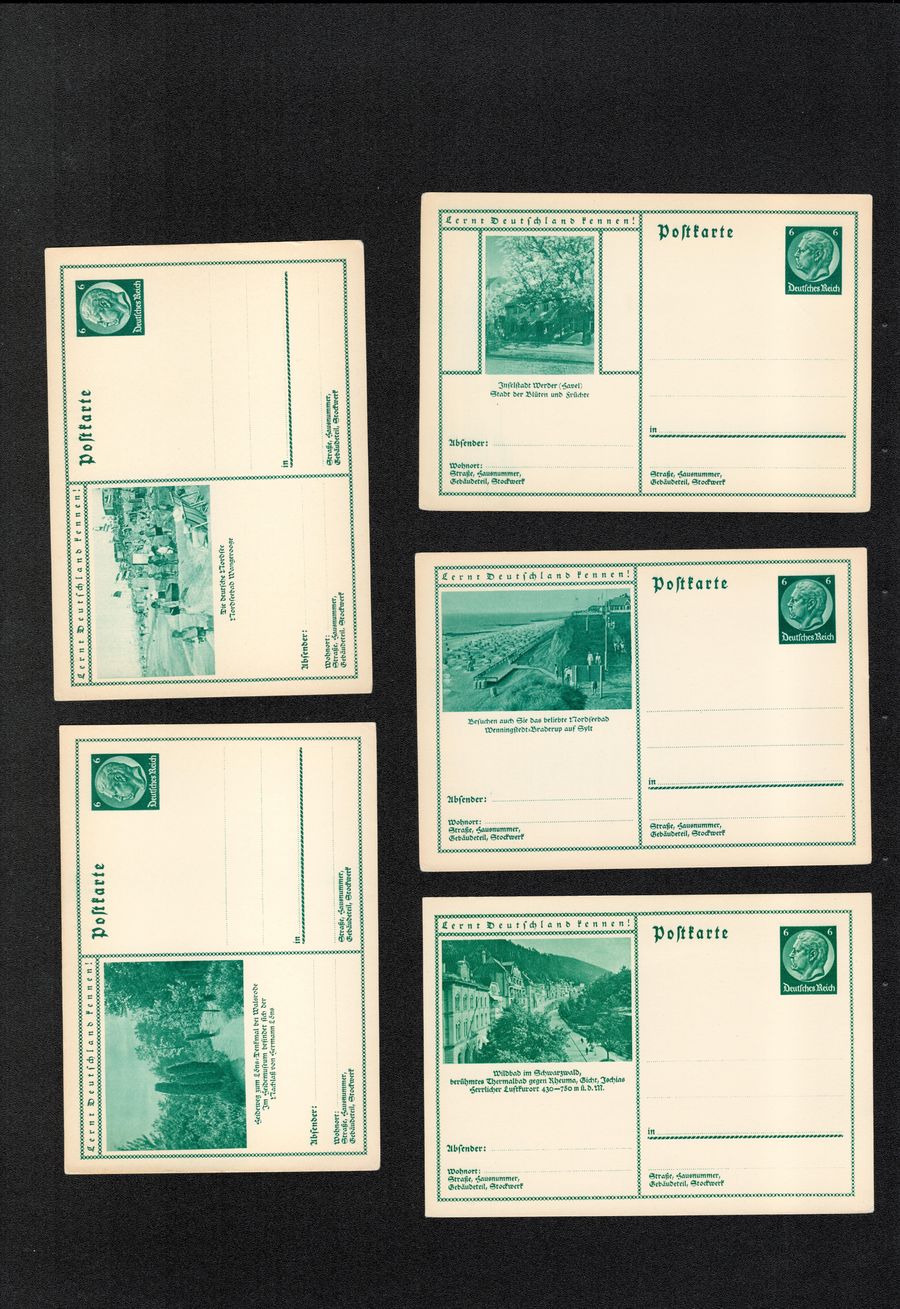
1082
$20
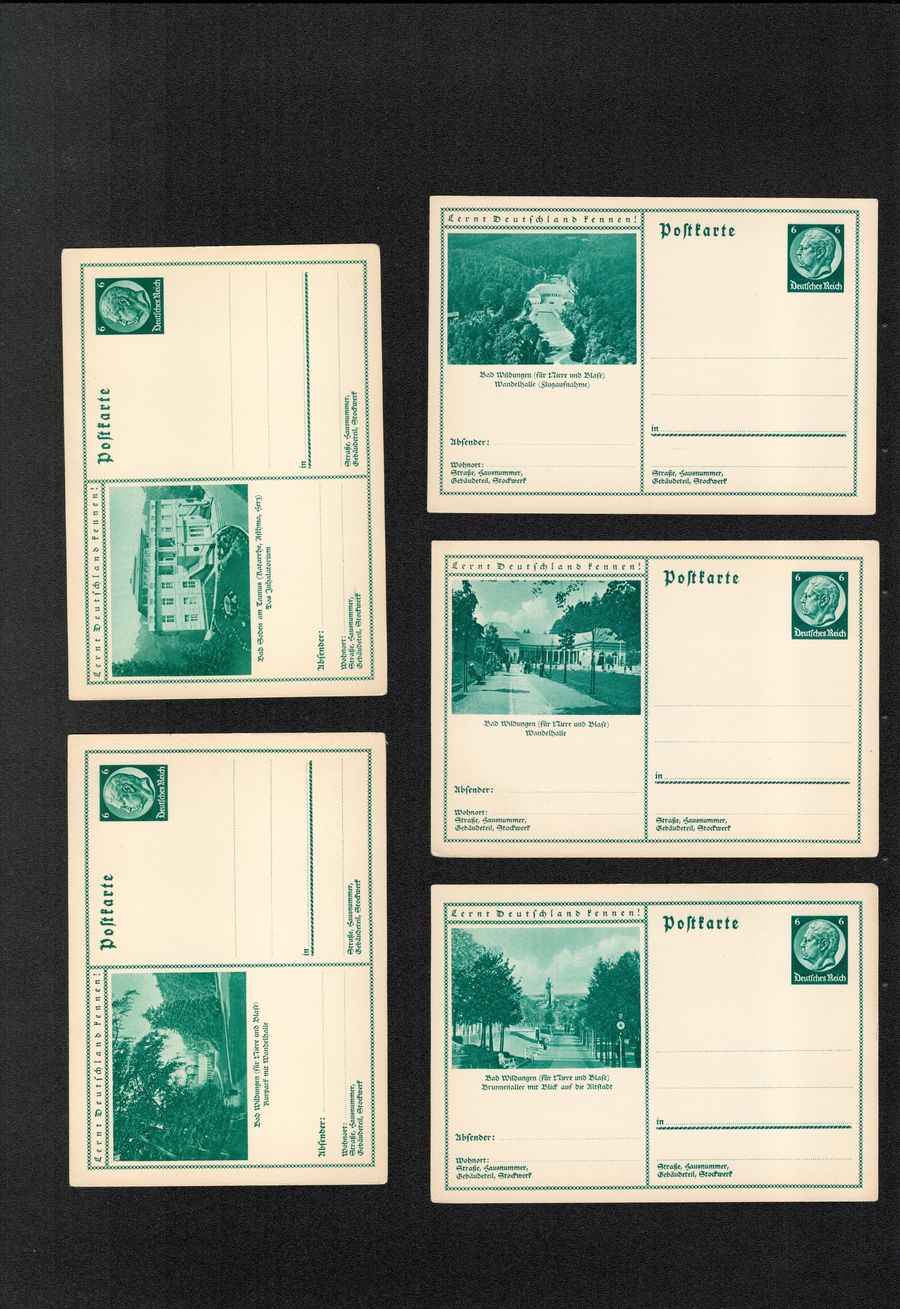
1083
$20

1084
$20
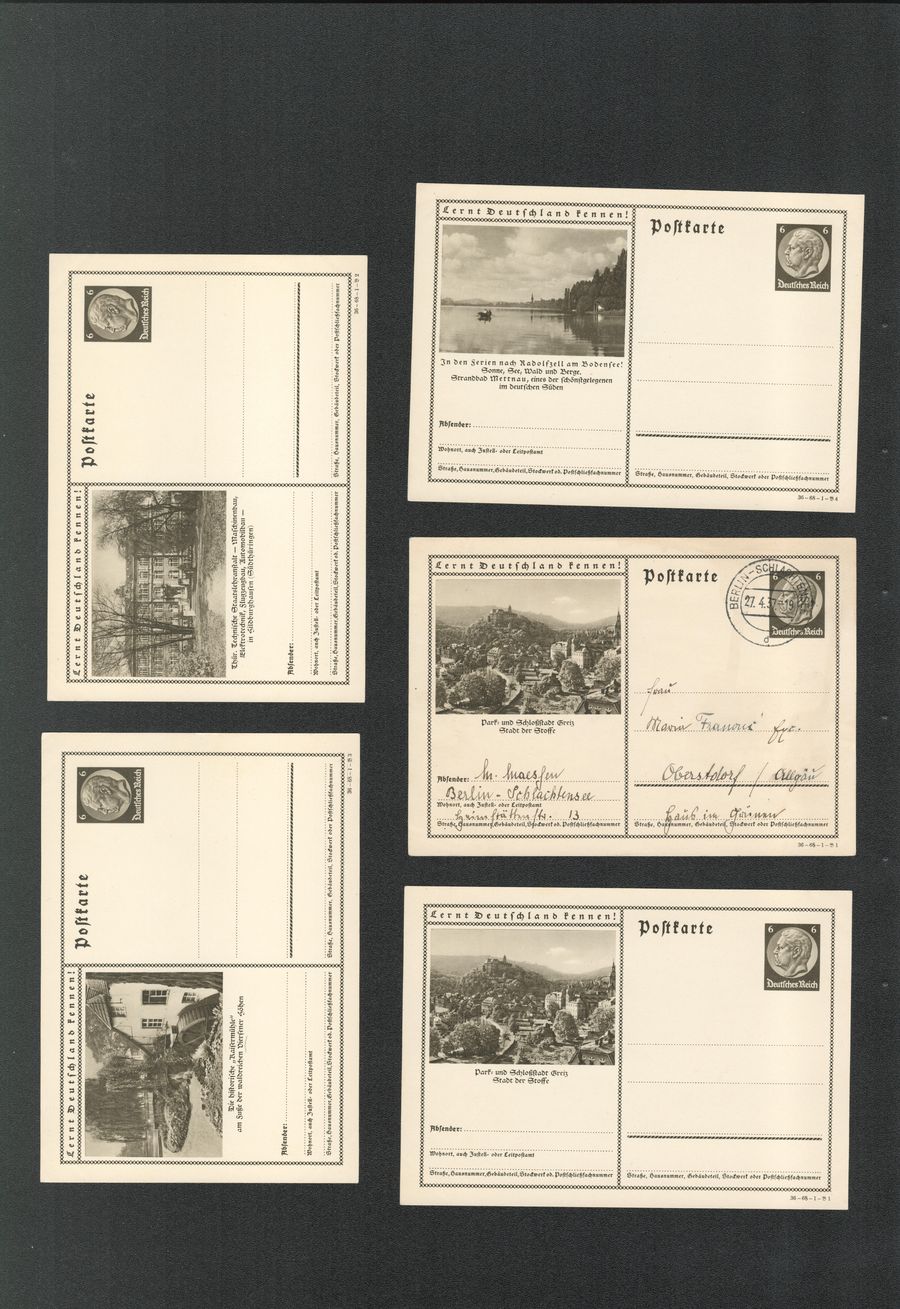
1085
$20
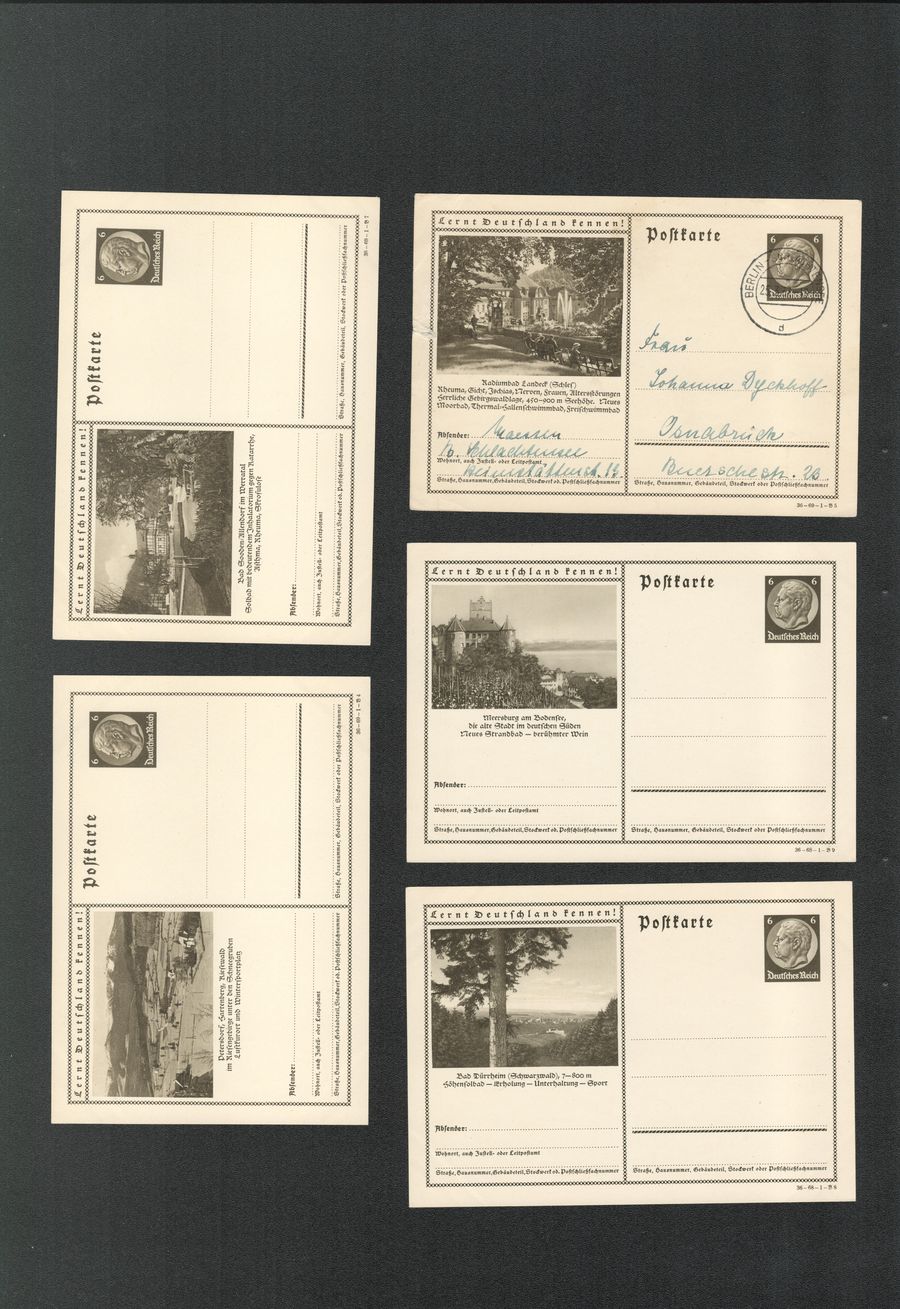
1086
$20
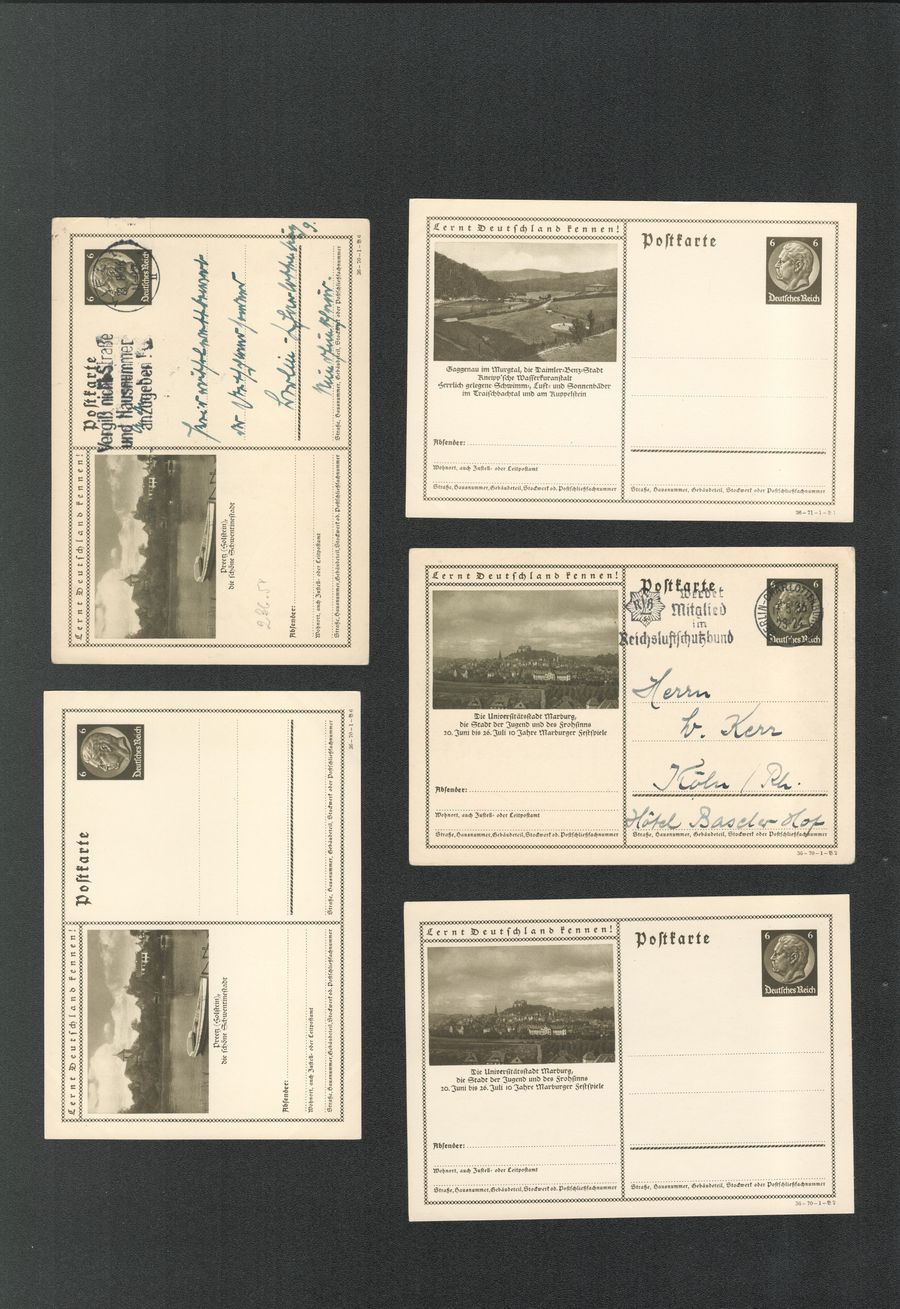
1087
$20
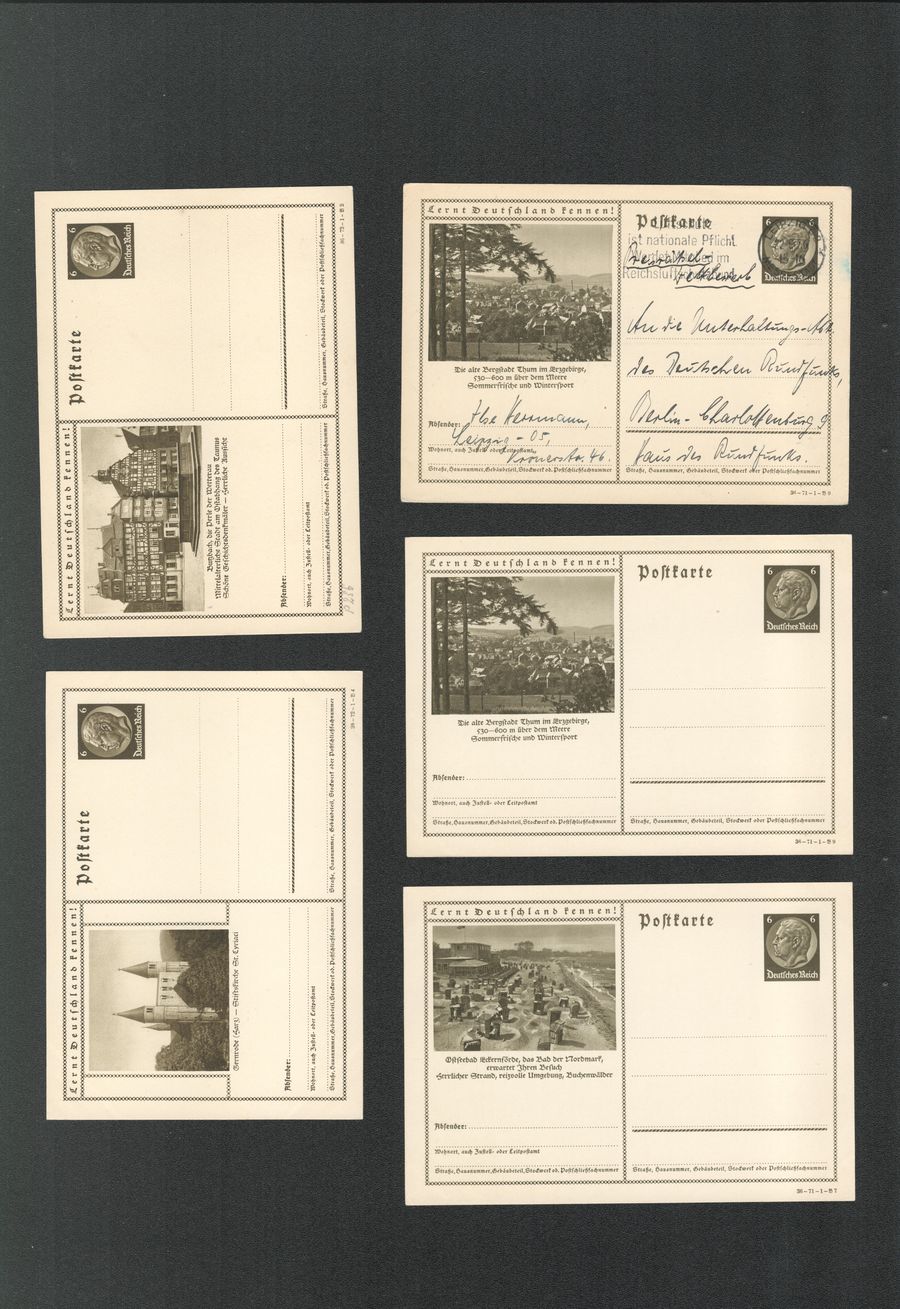
1088
$20
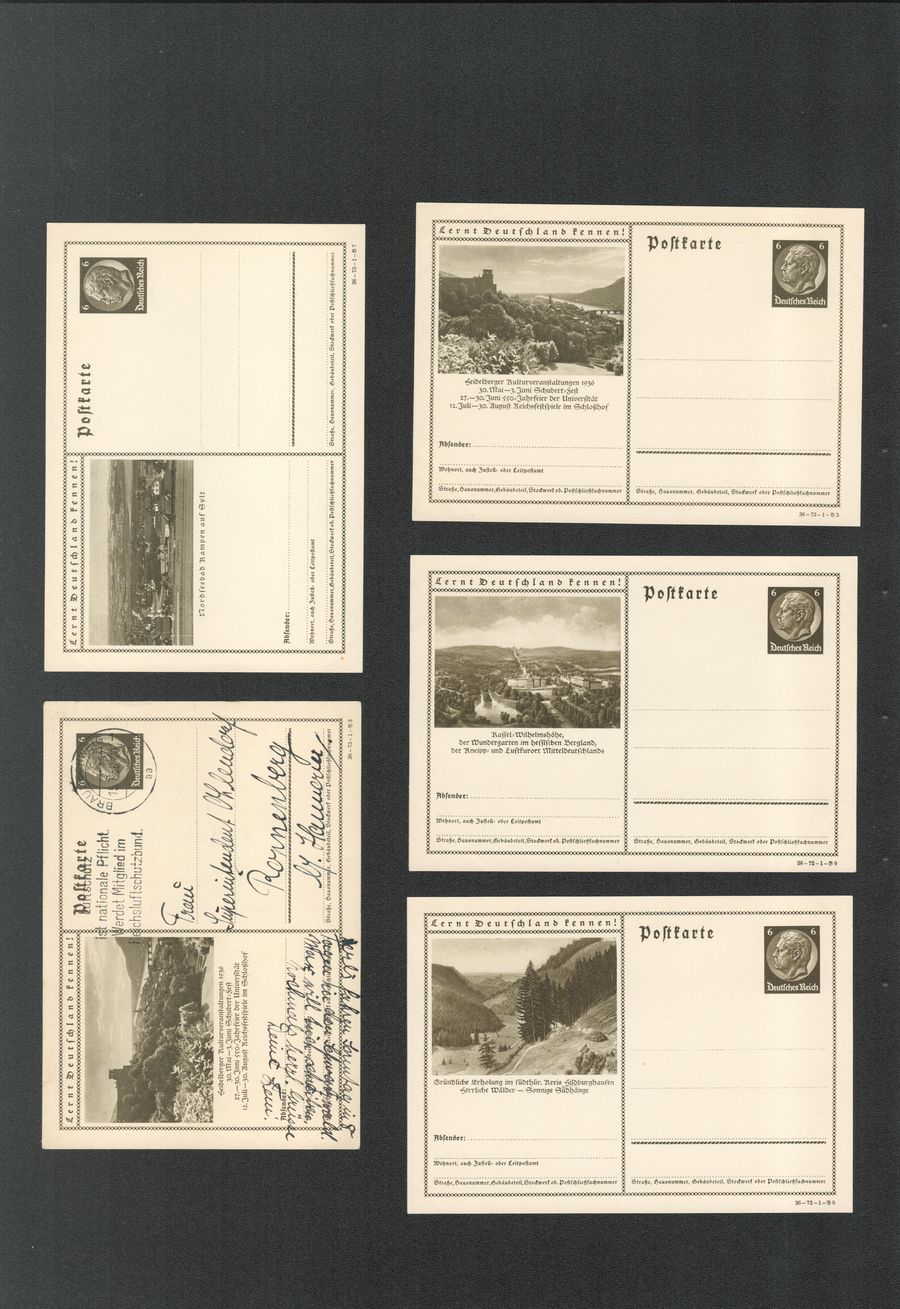
1089
$20
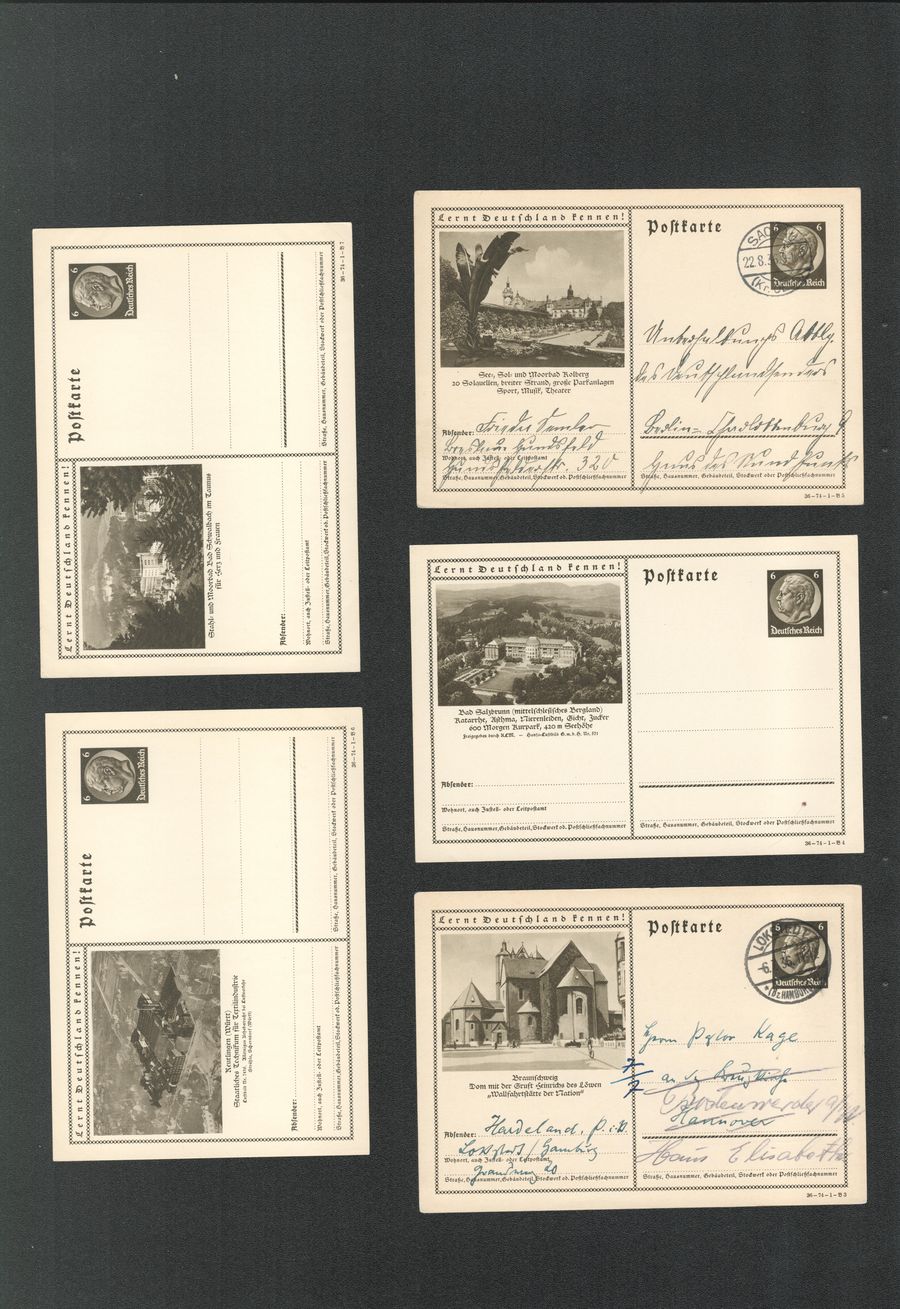
1090
$20
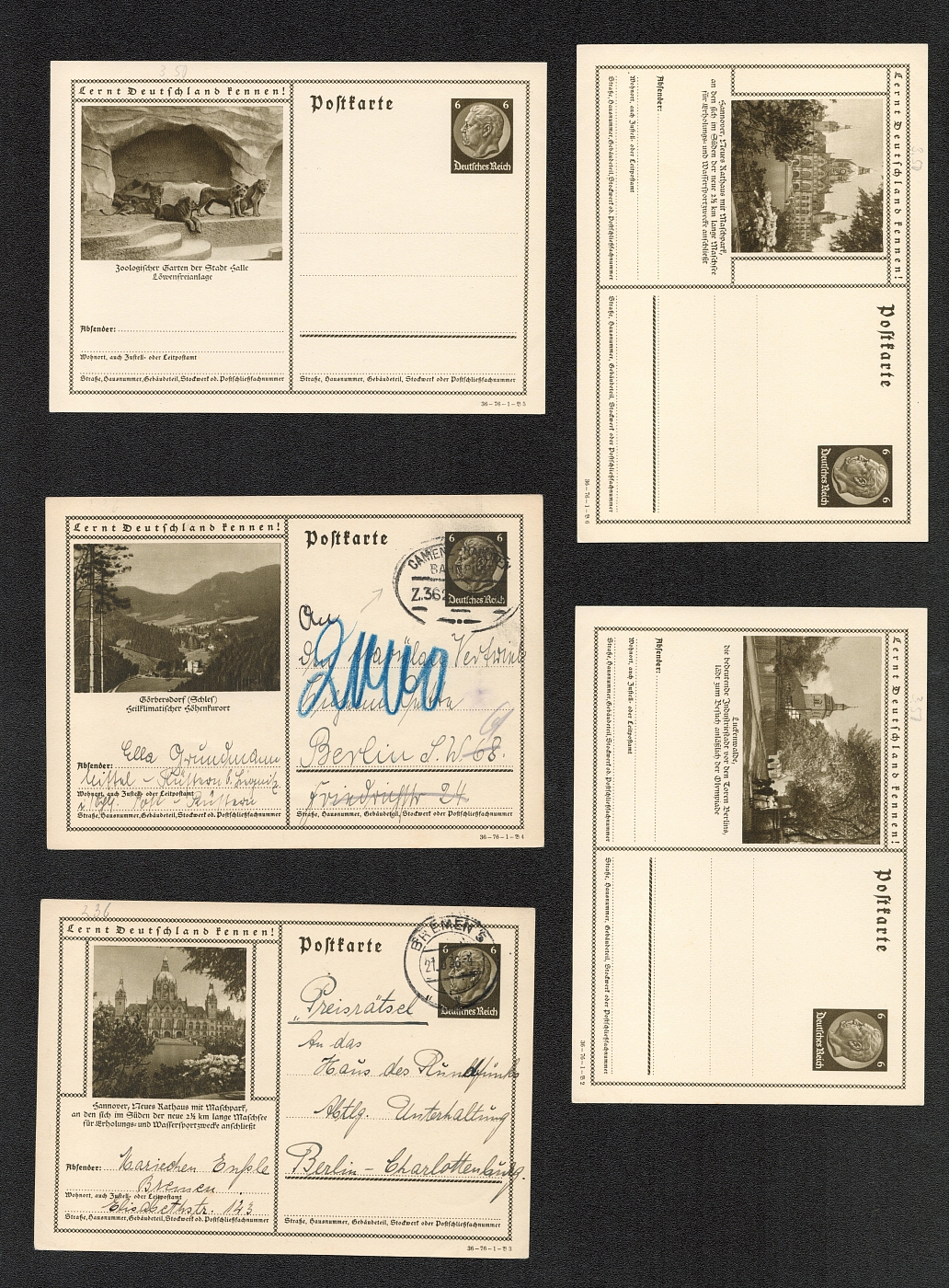
1091
$20
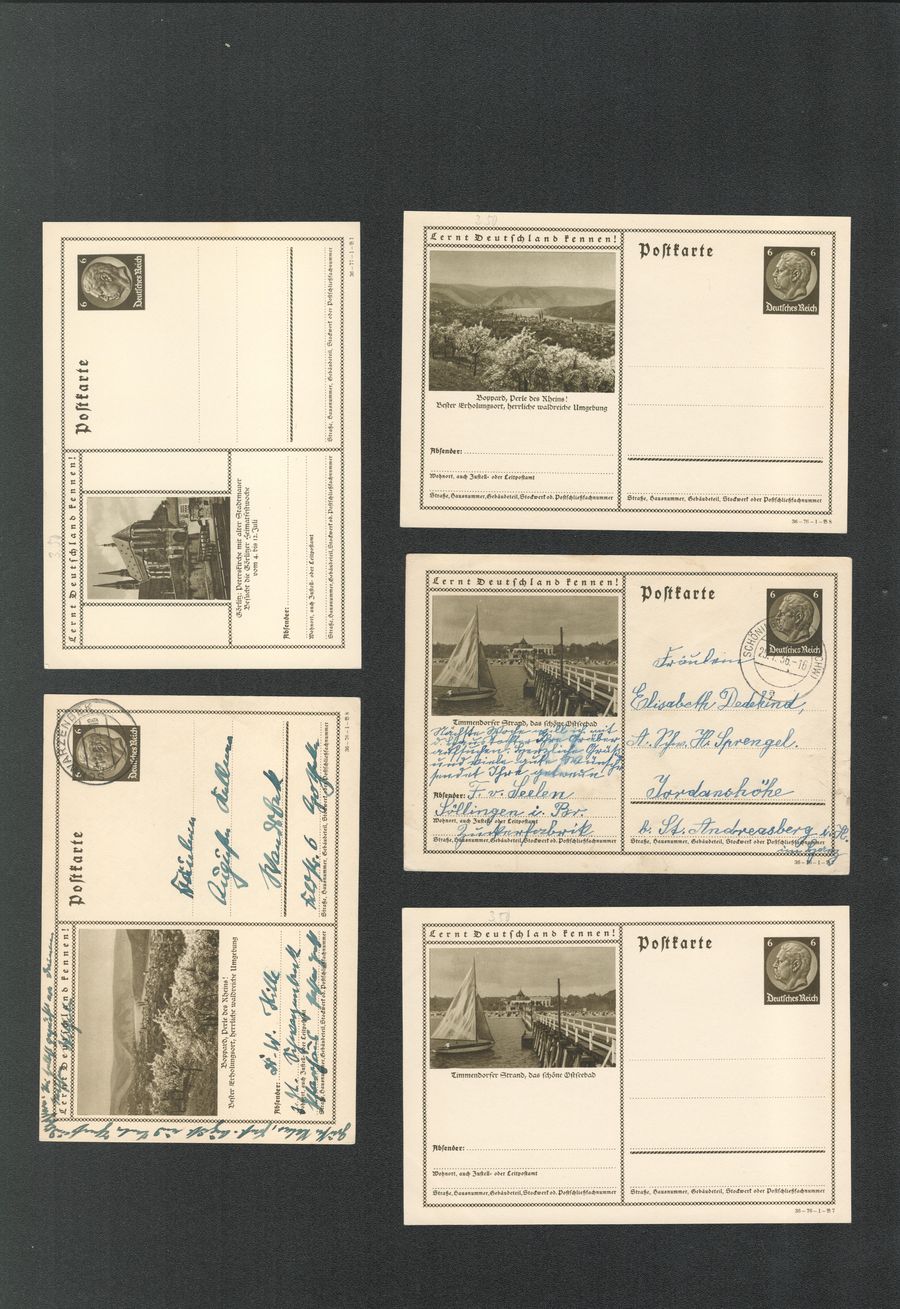
1092
$20
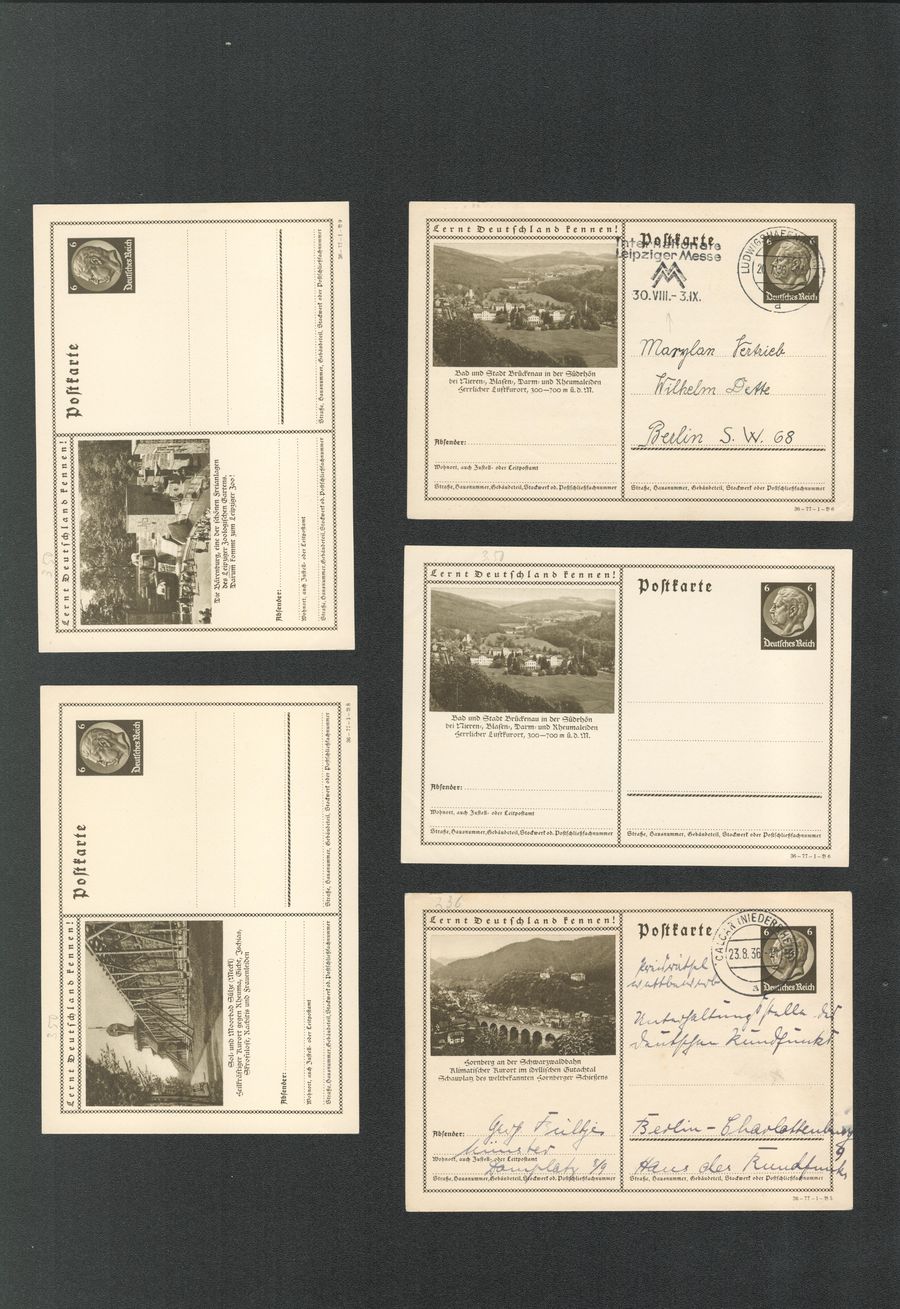
1093
$20
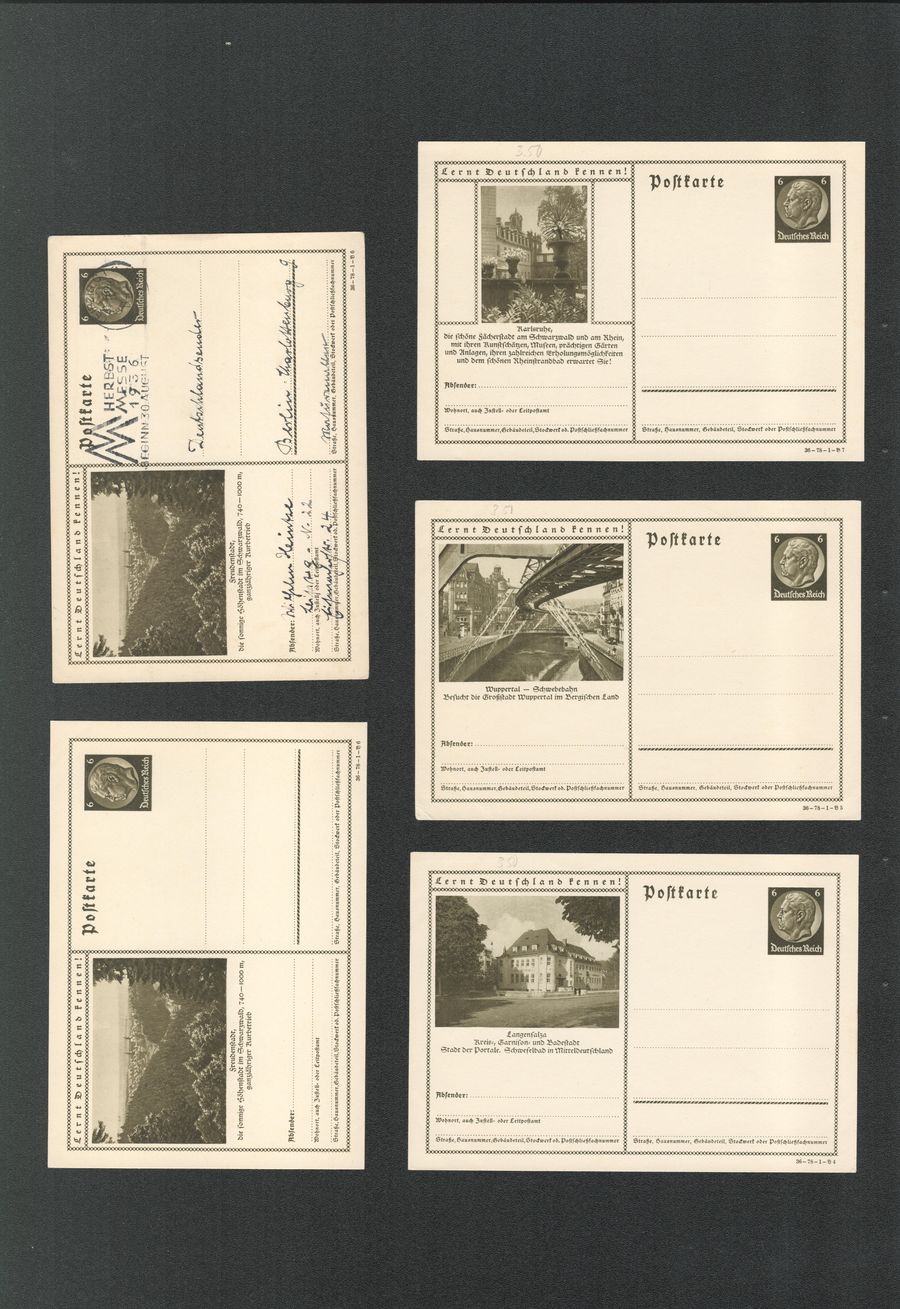
1094
$20
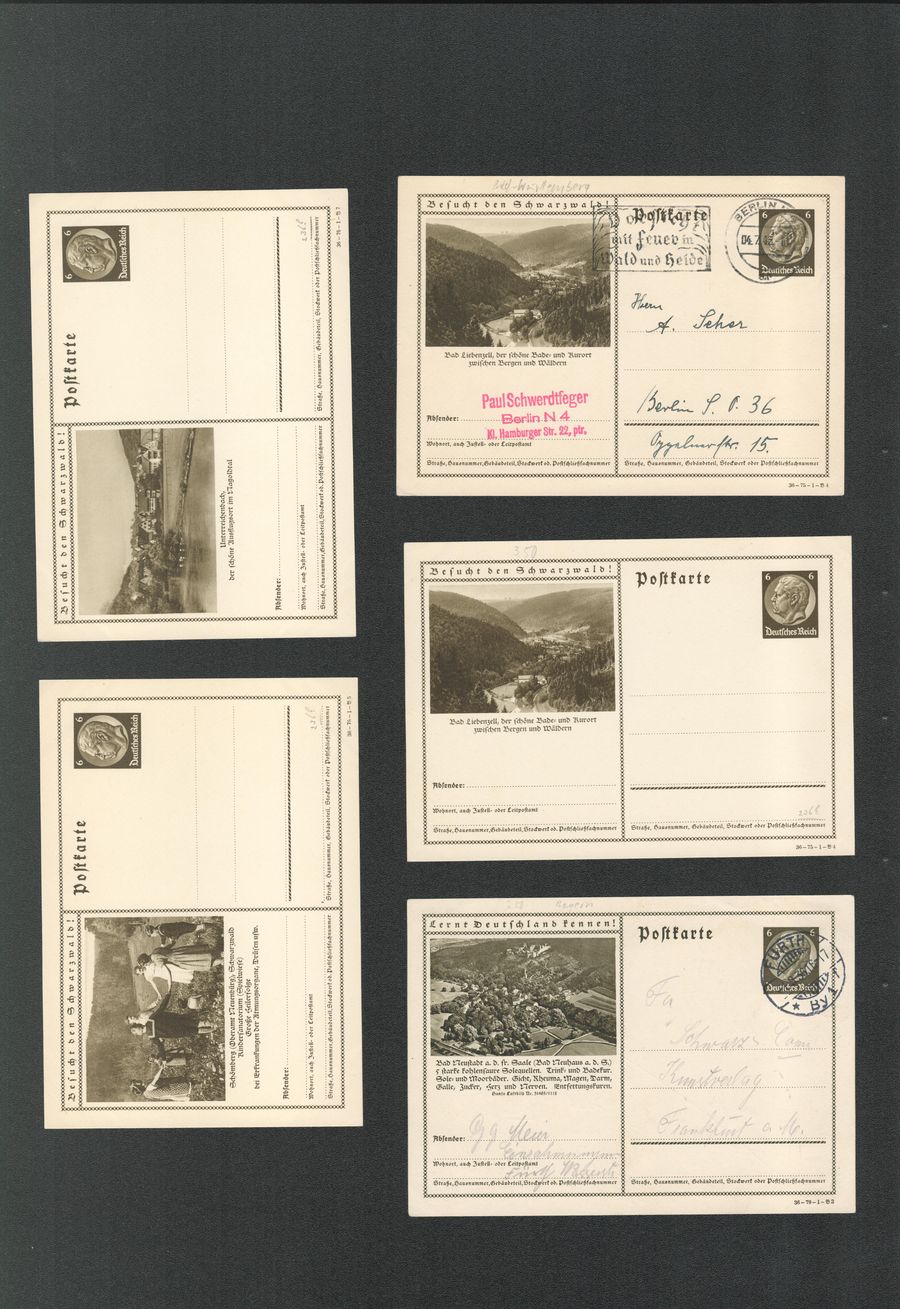
1095
$20
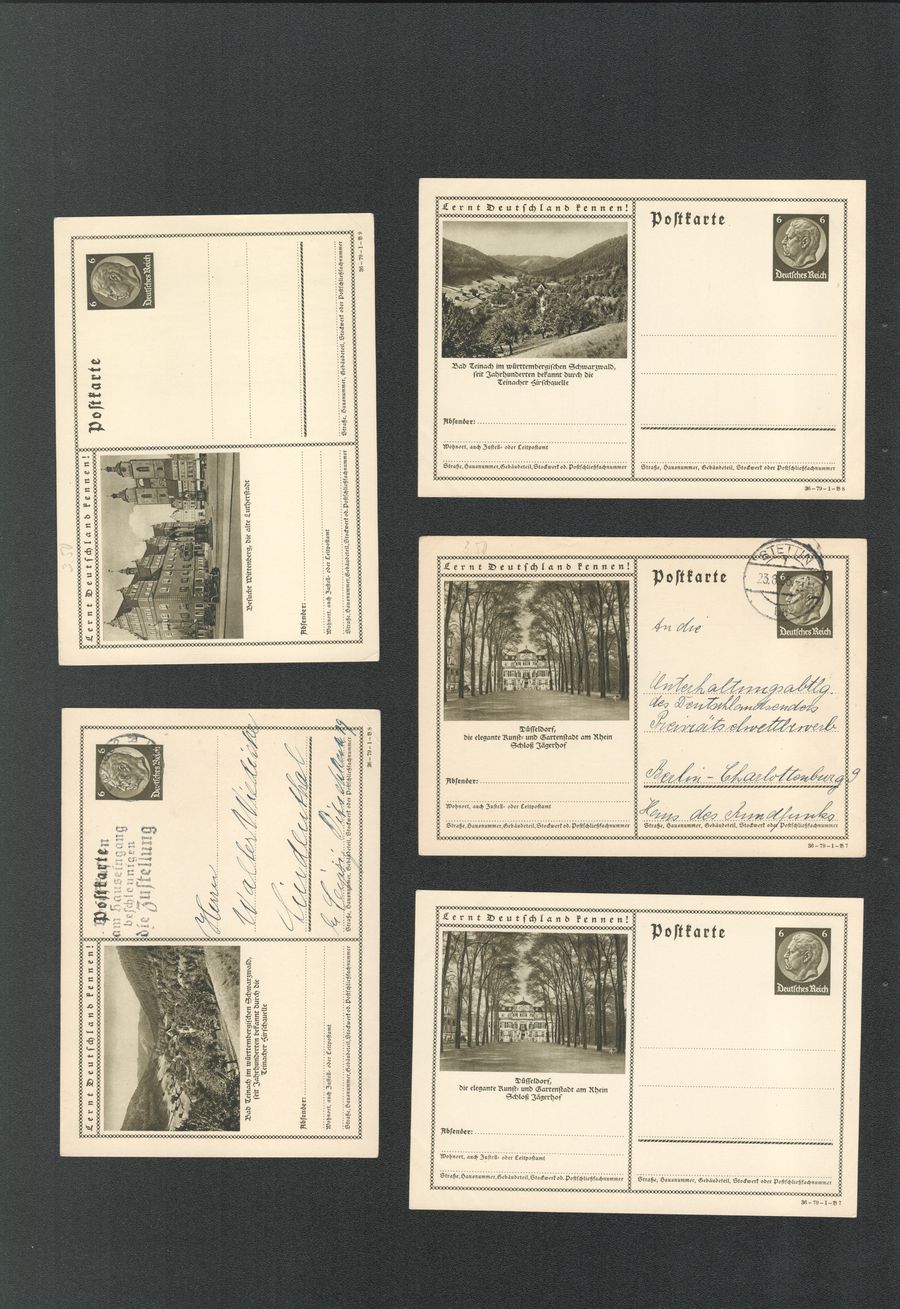
1096
$20
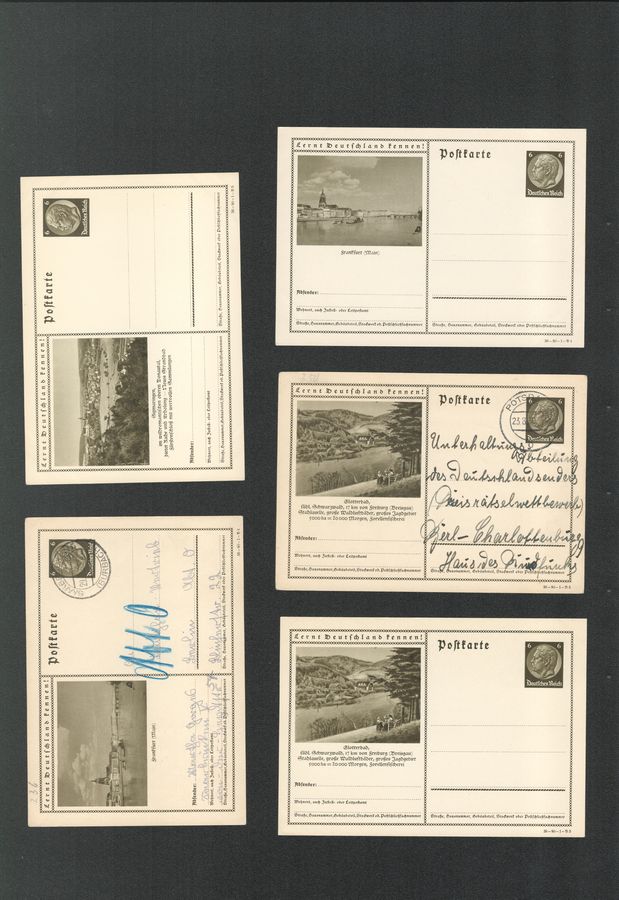
1097
$20
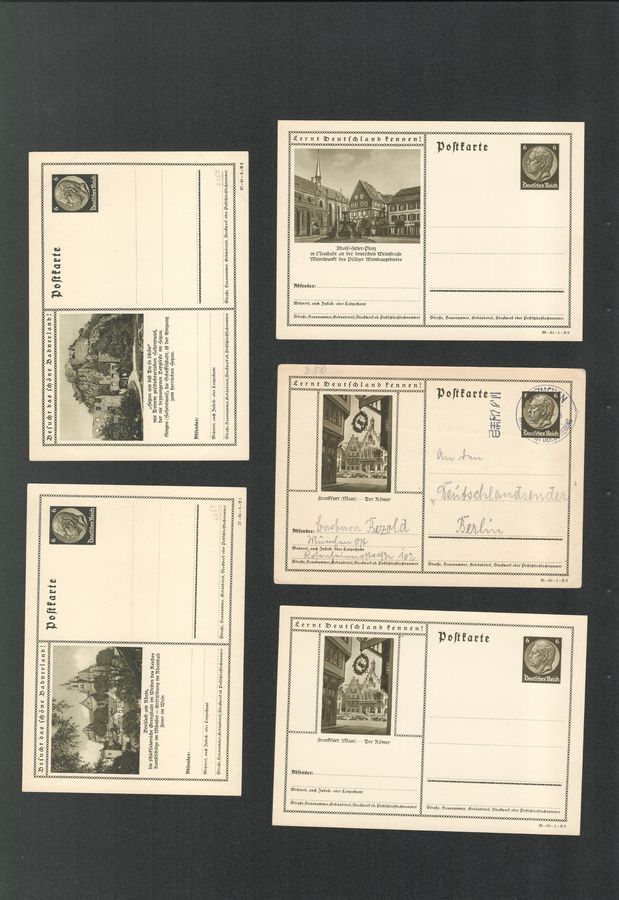
1098
$20
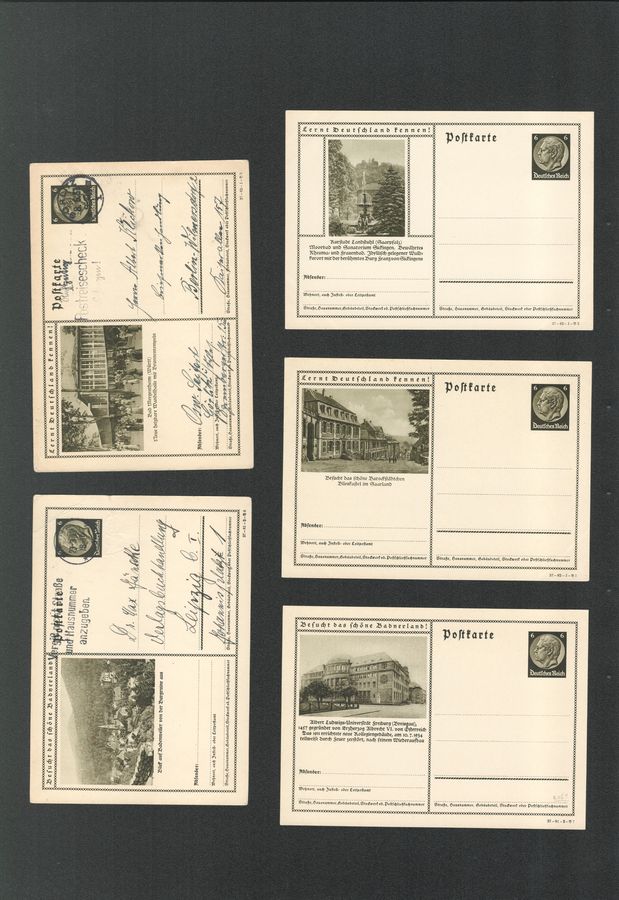
1099
$20
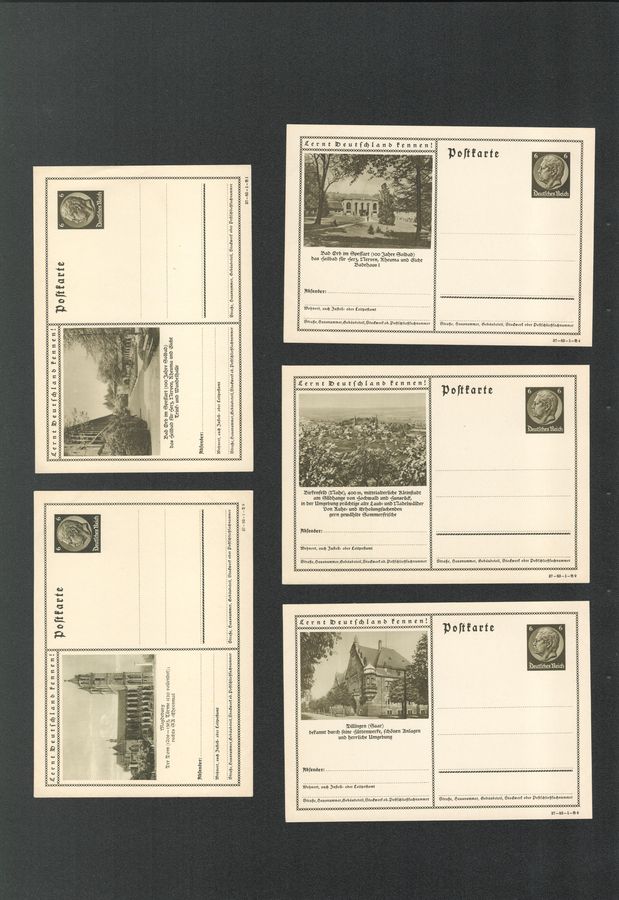
1100
$20
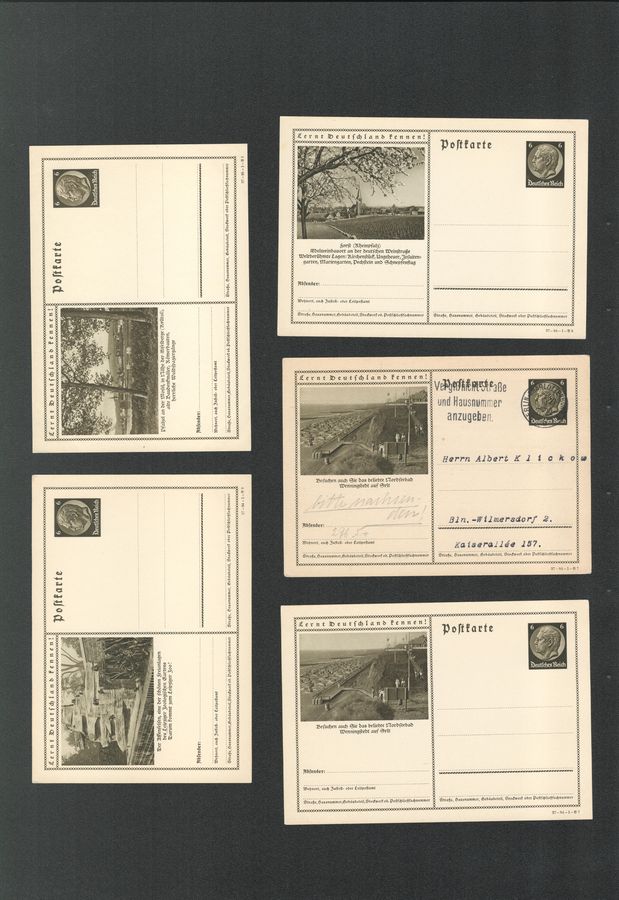
1101
$20
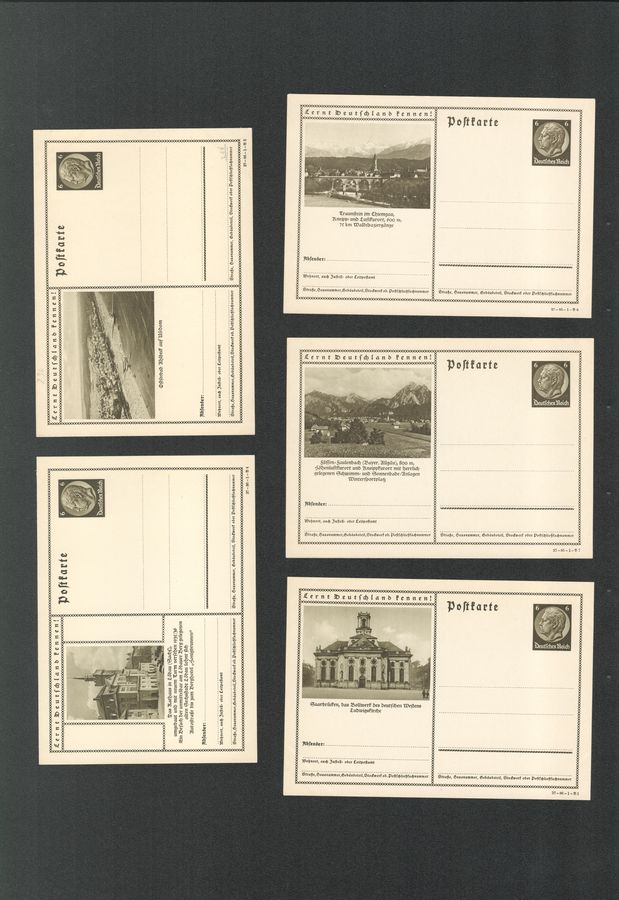
1102
$20
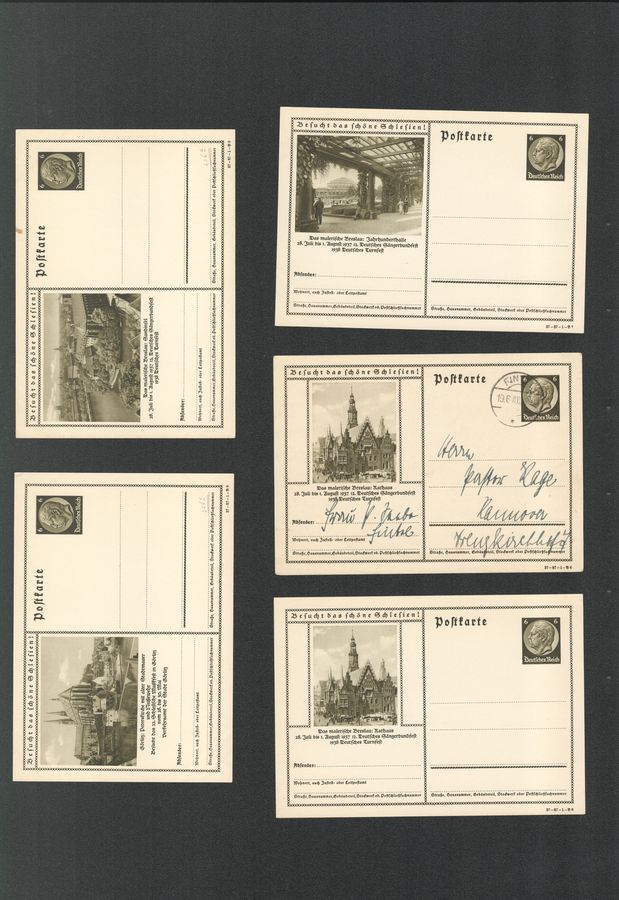
1103
$20
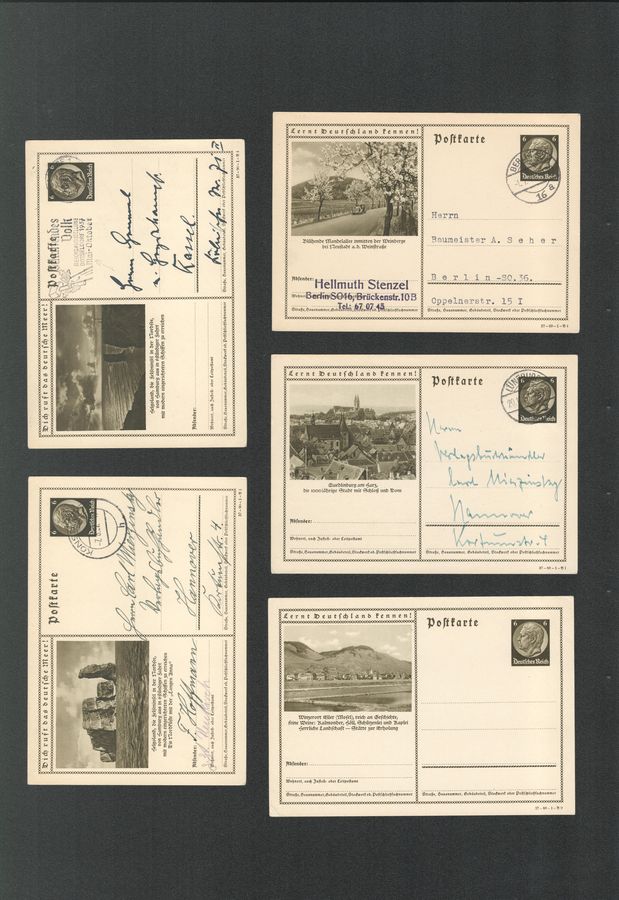
1104
$20
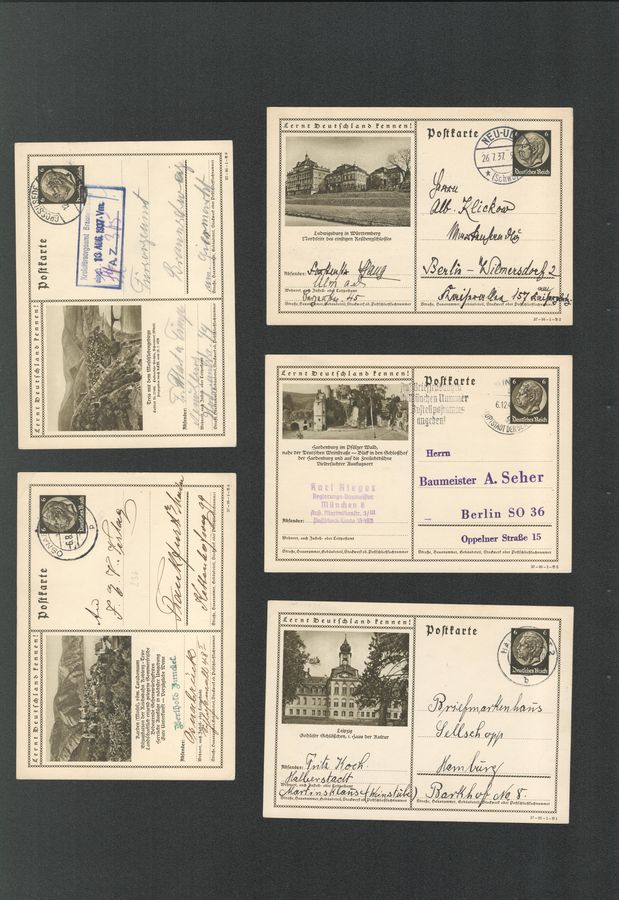
1105
$20
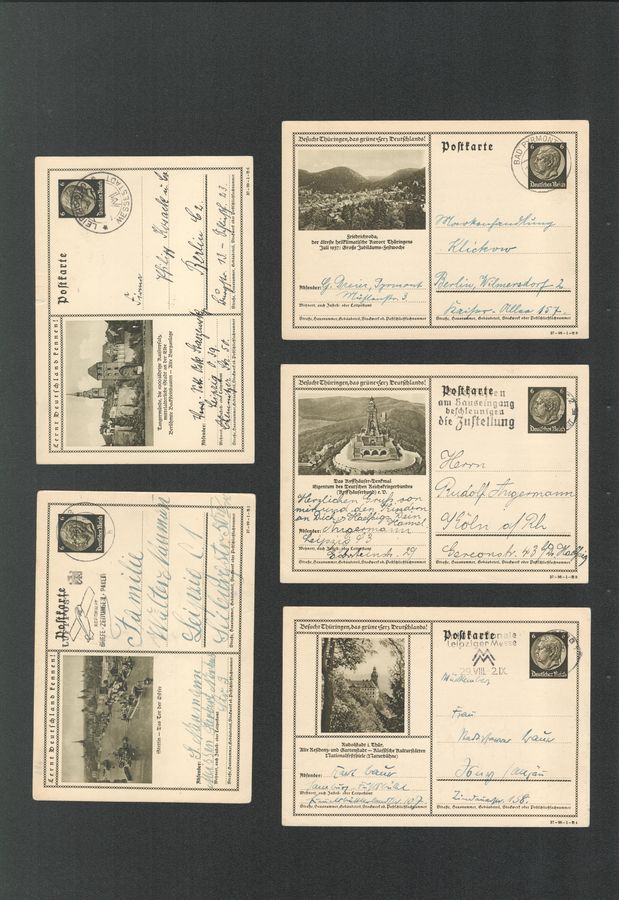
1106
$20
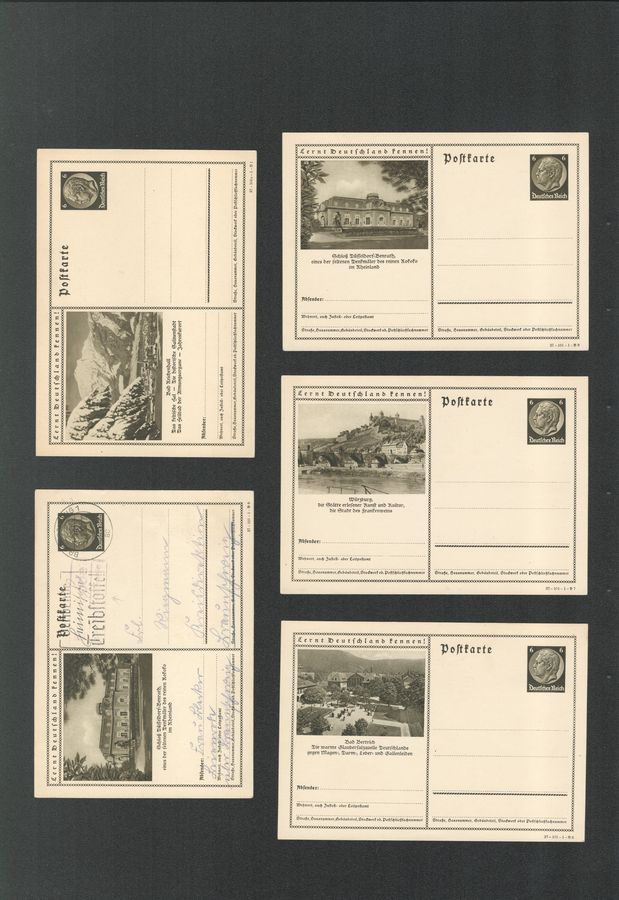
1107
$20
